India’s first 500 km Quantum Key Distribution (QKD) network

- 09 Nov 2025
In News:
A Bengaluru-based quantum technology startup, QNu Labs Pvt. Ltd., supported by the Department of Science and Technology (DST) under the National Quantum Mission (NQM), has successfully demonstrated India’s first large-scale Quantum Key Distribution (QKD) network spanning over 500 kilometres.
The demonstration was formally announced during the Emerging Science, Technology and Innovation Conclave (ESTIC) 2025.
Institutional and Strategic Support
- Funding Support: I-Hub Quantum Technology Foundation (Technology Innovation Hub under the National Mission on Interdisciplinary Cyber-Physical Systems – NMICPS, hosted at IISER Pune)
- Defence Collaboration: Indian Army (Southern Command) and Corps of Signals
- Model of Collaboration: STRIDE – Synergy of Technology, Research, Industry and Defence Ecosystem
What is Quantum Key Distribution (QKD)?
- Quantum Key Distribution is a quantum-secure communication technology that uses the principles of quantum mechanics to generate and exchange encryption keys between two parties.
- Key principle: Any attempt to intercept or observe quantum information disturbs its state, making eavesdropping immediately detectable, unlike classical encryption methods.
How QKD Works
- Transmits photons (light particles) through optical fibre
- Information is encoded as qubits
- Measurement or cloning by an intruder alters quantum states
- After error correction and privacy amplification, communicating parties obtain a shared secret key
- The key is used for end-to-end encrypted communication
Types of QKD
- Prepare-and-Measure Protocols: Example – BB84 protocol (most widely used)
- Entanglement-Based Protocols: Uses entangled photon pairs for instant intrusion detection
- DV-QKD (Discrete Variable): Photon-based detection
- CV-QKD (Continuous Variable): Uses amplitude and phase of laser light
Key Features of India’s 500 km QKD Network
- Distance: Over 500 km quantum-secure link
- Infrastructure: Deployed on existing optical fibre networks
- Architecture: Multiple trusted nodes to enable long-distance secure key exchange
- Hardware Integration:
- Quantum Suraksha Kavach for high-grade data protection
- QSIP (Quantum Random Number Generator System in Package) for quantum-certified randomness
- Latency & Security: Resistant to both current cyber threats and future quantum computing-based attacks
The test-bed optical fibre network was specially engineered by Southern Command Signals, with selective access provided by the Indian Army in the Rajasthan sector, enabling real-world validation.
Khangchendzonga National Park
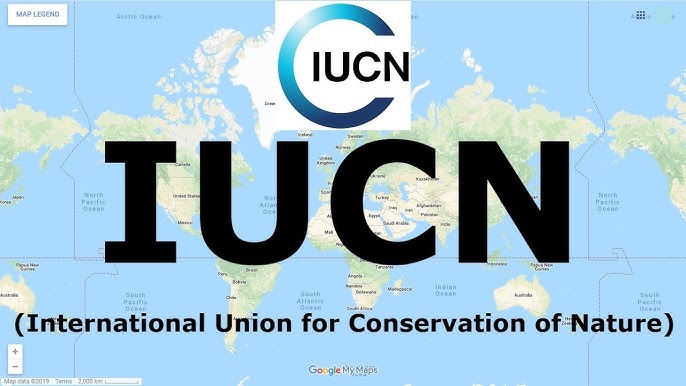
- 08 Nov 2025
In News:
- The International Union for Conservation of Nature (IUCN) has rated Khangchendzonga National Park as “Good” in its latest global review of Natural World Heritage Sites.
- It is the only Indian site to receive a positive “Good” conservation status, while sites like the Western Ghats and Sundarbans face concerns.
Location & Status
- Located in North Sikkim, along the India–Nepal border.
- Forms the core area of the Khangchendzonga Biosphere Reserve (KBR).
- India’s first “Mixed” UNESCO World Heritage Site (2016) – recognised for natural and cultural values.
- Part of the Himalaya Global Biodiversity Hotspot.
Geographical Features
- Area: ~ 1,784 sq. km
- Altitude Range: From 1,220 m to 8,586 m (vertical sweep of over 7 km).
- Home to Mount Khangchendzonga (8,586 m) - 3rd highest peak in the world.
- Landscape includes plains, deep valleys, alpine meadows, lakes, glaciers, and snow-clad mountains.
- Glaciers:
- 18 major glaciers (as per park records);
- Zemu Glacier - one of the largest glaciers in Asia.
Biodiversity
- Flora: Subtropical to alpine vegetation; oak, fir, birch, maple, rhododendron, alpine meadows.
- Fauna (Flagship species):
- Snow leopard
- Red panda
- Tibetan wolf
- Blue sheep
- Himalayan tahr
- Mainland serow
- Avifauna:
- Nearly half of India’s bird species recorded.
- Includes Impeyan pheasant (State bird of Sikkim) and Satyr tragopan.
Cultural & Community Significance
- One of the few regions with Lepcha tribal settlements.
- Known as “Mayel Lyang” (sacred land) by the Lepchas.
- Considered a sacred beyul (hidden valley) in Tibetan Buddhism.
- Ancient monasteries such as Tholung Monastery reflect cultural continuity.
Operation White Cauldron
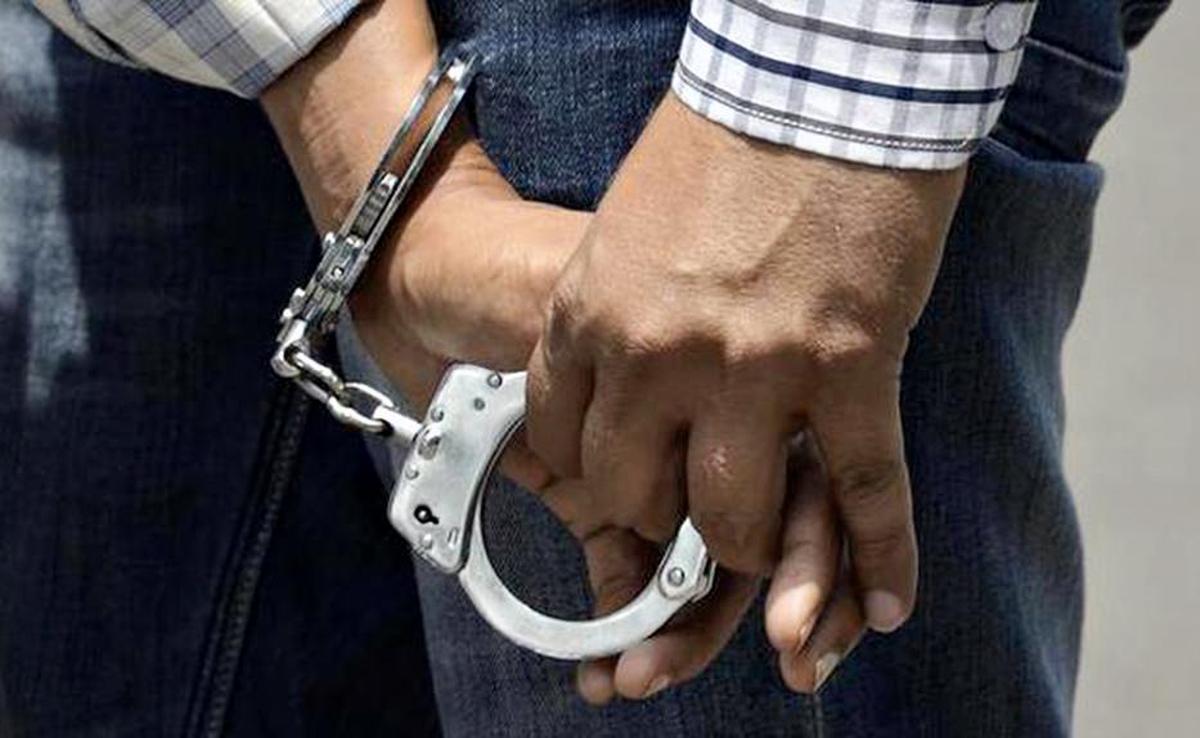
- 07 Nov 2025
In News:
In a significant action against the illicit drug trade, the Directorate of Revenue Intelligence (DRI) recently dismantled a clandestine alprazolam manufacturing unit in Valsad, Gujarat, under an intelligence-led operation codenamed “Operation White Cauldron.” The bust highlights the growing challenge of synthetic drug production in India and underscores the role of enforcement agencies in implementing the Narcotic Drugs and Psychotropic Substances (NDPS) Act, 1985.
Alprazolam
Alprazolam belongs to the benzodiazepine class of drugs, which act as central nervous system (CNS) depressants. Medically, it is prescribed for anxiety and panic disorders, but its misuse can lead to addiction, cognitive impairment, and overdose. Due to its abuse potential, alprazolam is classified as a psychotropic substance under the NDPS Act, 1985, making its unauthorised manufacture, possession, and trafficking a serious criminal offence.
NDPS Act, 1985: Legal Framework
The Narcotic Drugs and Psychotropic Substances Act, 1985 forms the backbone of India’s drug control regime. It:
- Prohibits unauthorised production, cultivation, manufacture, sale, transport, storage, and consumption of narcotic drugs and psychotropic substances.
- Enables forfeiture of property derived from or used in illicit drug trafficking.
- Empowers the government to add or remove substances from the list of controlled drugs.
- Seeks to implement India’s obligations under international drug control conventions.
The Act aims not only at law enforcement but also at prevention, regulation, and deterrence of drug abuse and trafficking.
Wider Implications and Trends
The Valsad bust is part of a broader pattern. In 2025 alone, the DRI dismantled four illegal drug manufacturing units across multiple states. A similar operation earlier in the year in Andhra Pradesh uncovered another alprazolam unit, with drugs again intended for Telangana. These cases highlight:
- The rise of domestic synthetic drug manufacturing.
- Increasing misuse of pharmaceutical psychotropics.
- The need for tighter monitoring of precursor chemicals and supply chains.
Relevance to National Initiatives
Such enforcement actions directly support the government’s Nasha Mukt Bharat Abhiyaan, which seeks to reduce drug demand, disrupt supply networks, and protect vulnerable communities from substance abuse.
Second World Summit for Social Development (WSSD-2), 2025
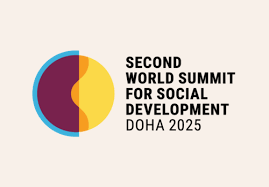
- 07 Nov 2025
In News:
The Second World Summit for Social Development (WSSD-2) is being held Doha, Qatar, under the aegis of the United Nations. India is represented at the summit by the Minister for Labour & Employment and Youth Affairs & Sports, Dr. Mansukh Mandaviya, underscoring India’s commitment to global social development and social justice.
Background and Evolution
The first World Summit for Social Development was held in Copenhagen in 1995, marking a watershed moment in global consensus on placing people-centric development at the heart of economic policy. It resulted in the Copenhagen Declaration, which laid down 10 commitments focused on poverty eradication, employment generation, and social inclusion.
Three decades later, WSSD-2 seeks to reassess global progress, address emerging challenges, and reinvigorate global solidarity in the context of widening inequalities, technological disruption, climate stress, and demographic transitions.
Objectives of WSSD-2
The summit aims to:
- Reaffirm commitment to poverty eradication, full and productive employment, and decent work for all.
- Promote social inclusion, equality, and well-being, particularly for vulnerable and marginalized groups.
- Assess gaps in implementation of social development commitments since 1995.
- Strengthen the implementation of the 2030 Agenda for Sustainable Development and the Sustainable Development Goals (SDGs).
- Reaffirm the 10 commitments of the Copenhagen Declaration.
- Enhance global cooperation and solidarity in social development.
Importantly, WSSD-2 is aligned with other key global processes, including the 2023 SDG Summit Political Declaration, the Pact of the Future, and the forthcoming Fourth International Conference on Financing for Development (FfD4), ensuring policy coherence across global development frameworks.
India’s Participation and Contributions
At the summit, Dr. Mansukh Mandaviya is participating in the Opening Plenary, delivering India’s National Statement, and joining global leaders in adopting the Doha Political Declaration, which will guide future international action on social development.
India is actively contributing to the High-Level Round Table on the Three Pillars of Social Development:
- Poverty Eradication
- Full and Productive Employment and Decent Work for All
- Social Inclusion
In this forum, India is showcasing its inclusive and digitally enabled growth model, highlighting how digital public infrastructure, financial inclusion, and targeted welfare delivery have strengthened social protection and employment outcomes.
Bilateral and Multilateral Engagements
On the sidelines of WSSD-2, India is strengthening international cooperation through bilateral meetings with representatives from Qatar, Romania, Mauritius, and the European Union, as well as interactions with the Director-General of the International Labour Organization (ILO) and senior UN officials. These engagements focus on:
- Labour mobility
- Skilling and workforce development
- Social protection frameworks
- Employment generation
Additionally, India is highlighting institutional innovations such as the National Career Service (NCS) Portal, which connects job seekers and employers, improving transparency and inclusivity in labour markets.
Katkari Tribe
- 06 Nov 2025
In News:
The Katkari tribe, one of India’s Particularly Vulnerable Tribal Groups (PVTGs), continues to face structural marginalisation, landlessness, bonded labour, and livelihood precarity. To highlight these long-standing injustices, the Shramjeevi Organisation has announced a two-day protest titled ‘Aatmakalesh se Aatmanirdhar’ (From Anguish to Resolve), featuring silent fasts and symbolic lamp-lighting across villages in Maharashtra’s Thane district.
About the Katkari Tribe
Classification & Distribution
- A PVTG—one among the 75 Particularly Vulnerable Tribal Groups of India.
- Primarily concentrated in Maharashtra (Pune, Raigad, Thane, and Palghar districts) and parts of Gujarat.
- Historically forest-dependent tribal community.
Cultural Features
- Also known as Kathodis, due to their traditional occupation of preparing Katha (Catechu) from the sap of Acacia catechu (Khair tree).
- Traditionally consumed rodents, a reflection of their unique food culture.
- Housing: Many still reside in bamboo huts and forest-based structures.
- Family Structure: Despite a patriarchal system, they largely follow nuclear family setups rather than joint families.
Language
- Bilingual community.
- Speak the Katkari language within the group and Marathi with others; some speak Hindi as well.
Livelihoods
- Dominated by agricultural labour, sale of firewood, fishing, coal making, and brick manufacturing.
- Seasonal migration is common due to limited livelihood options.
- Possess extensive knowledge of uncultivated foods — fish, crabs, small fauna, tubers, wild vegetables, nuts, fruits, etc.
- Landlessness is severe:
- About 87% of Katkari households are landless (vs. 48% national rural average).
- High landlessness → rampant migration, vulnerability to exploitation, and unstable incomes.
Contemporary Issues Faced by the Katkaris
- Bonded labour and trafficking continue to affect segments of the community.
- Unpaid wages and limited access to social protection schemes.
- Breakdown of education among children due to seasonal migration of families.
- Weak implementation of:
- Forest Rights Act (FRA) land titles
- Village rehabilitation schemes
- Mahatma Gandhi National Rural Employment Guarantee Act (MGNREGA/MNREGA) payments
- Rising issues of alcohol abuse, livelihood insecurity, and lack of government follow-through on rehabilitation commitments.
Significance
- Highlights persistent vulnerability among India’s PVTGs despite decades of welfare schemes.
- Calls attention to landlessness and migration as structural issues aggravating poverty.
- Reaffirms the need for targeted tribal development, effective FRA implementation, and monitoring of labour rights.
- Aligns with the broader national effort to focus on PVTG development, especially under the government’s PVTG Mission and tribal empowerment initiatives.
Exercise MILAN
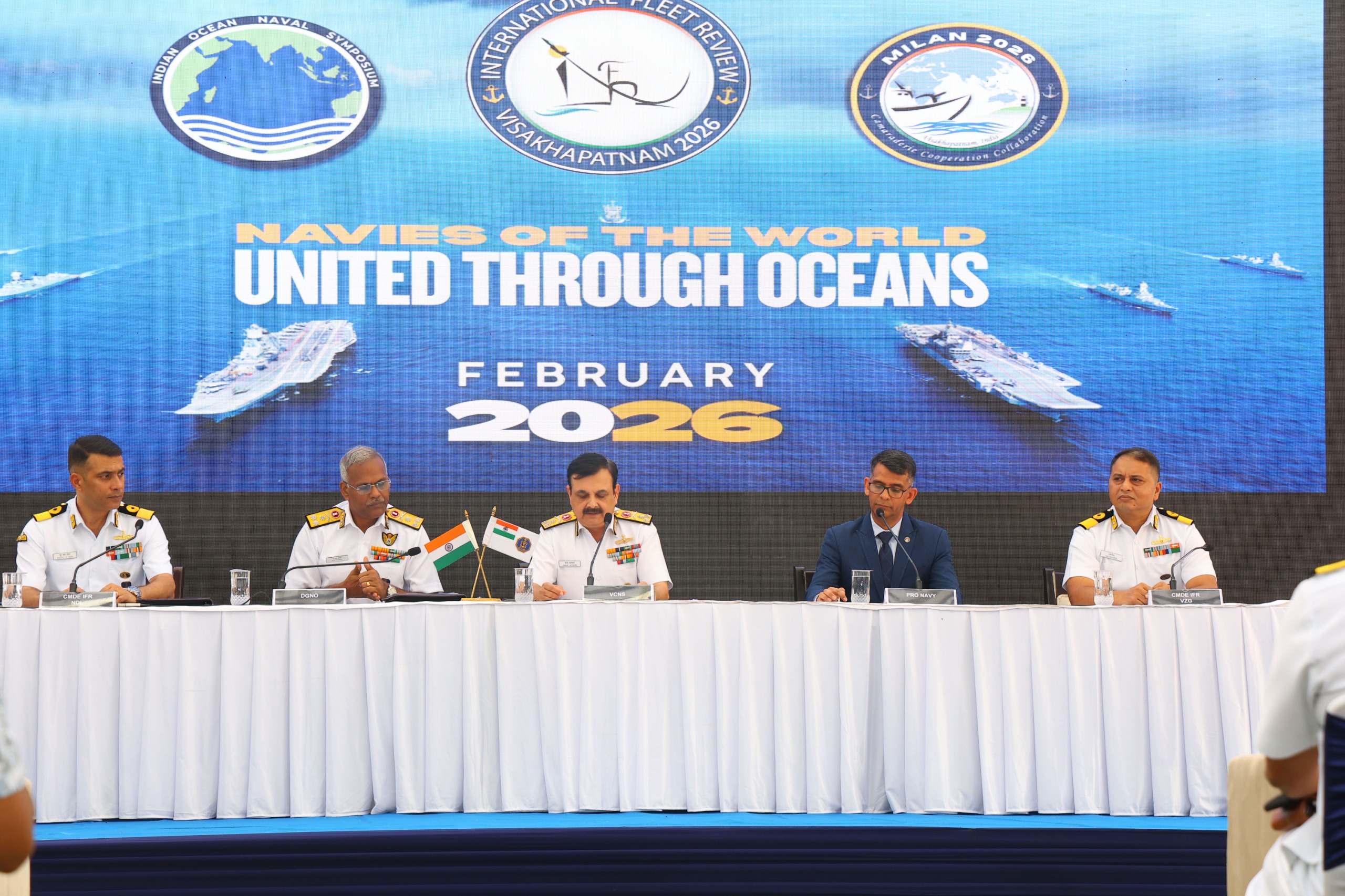
- 03 Nov 2025
In News:
India will host a historic maritime convergence from 15–25 February 2026 at Visakhapatnam, featuring three major international naval events conducted simultaneously for the first time:
- International Fleet Review (IFR) 2026
- Exercise MILAN 2026
- IONS Conclave of Chiefs (2025–27 Chairmanship)
The event operationalises the MAHASAGAR vision (Mutual and Holistic Advancement for Security and Growth Across Regions), announced in 2025, extending India's SAGAR doctrine from the Indian Ocean to wider maritime regions.
About Exercise MILAN
Background
- Biennial multilateral naval exercise launched in 1995 at Port Blair.
- Started with four participants — Indonesia, Singapore, Sri Lanka & Thailand.
- Has evolved into India’s largest naval exercise, reflecting the Act East Policy and SAGAR/MAHASAGAR frameworks.
Objectives
- Strengthen interoperability, maritime domain awareness, and naval diplomacy.
- Promote cooperation on maritime security, HADR, and regional stability.
MILAN 2026 Features
- Dual-phase format:
- Harbour Phase: Briefings, professional exchanges, cultural events.
- Sea Phase:
- Anti-submarine warfare (ASW)
- Air defence drills
- Search and rescue (SAR)
- Maritime domain awareness operations
- International City Parade at RK Beach with contingents from:
- Participating navies
- Indian Army & Indian Air Force
International Fleet Review (IFR) 2026
- A Presidential Fleet Review at sea showcasing India’s indigenous naval platforms, including:
- INS Vikrant (India’s first indigenously built aircraft carrier)
- Visakhapatnam-class destroyers
- Nilgiri-class stealth frigates
- Arnala-class ASW corvettes
- Participation expected from navies across the globe, alongside ships from:
- Indian Navy
- Indian Coast Guard
- Merchant Marine
- Demonstrates India’s transformation into a “Builder’s Navy”.
IONS Conclave of Chiefs (2026)
Overview
- Platform under the Indian Ocean Naval Symposium (IONS) for promoting:
- Maritime cooperation
- Information sharing
- HADR coordination
- Regional security
- India will hold the IONS Chairmanship (2025–27) for the second time.
The Conclave will deliberate on maritime security, operational synergy, and emerging threats.
MAHASAGAR Vision
- Announced in 2025.
- Expands the earlier SAGAR doctrine to emphasise:
- Sustainability
- Collective regional responsibility
- Secure, open and inclusive maritime commons
- Supports India’s role as a Preferred Security Partner in the Indo-Pacific and beyond.
Significance of the 2026 Maritime Convergence
- First time India is hosting IFR, MILAN & IONS together.
- Strengthens India’s position as a responsible maritime power.
- Enhances India's role in Indo-Pacific cooperation through frameworks such as:
- Act East Policy
- MAHASAGAR
- SAGAR
- Indo-Pacific Oceans Initiative (IPOI)
- IONS
- Showcases India’s indigenous shipbuilding capacity and India’s Navy as a driver of regional security architecture.
- Expected to generate significant economic benefits for Visakhapatnam through tourism and services.
Ayni Air Base
- 02 Nov 2025
In News:
India has formally concluded its operations at the Ayni Air Base (Gissar Military Aerodrome) in Tajikistan, ending a two-decade presence that began in 2002. The withdrawal followed the expiry of a bilateral agreement in 2022, after which Tajikistan chose not to renew the lease. Indian personnel and equipment were pulled out by early 2023.
About Ayni Air Base
- Location: Near Dushanbe, Tajikistan.
- Status: India’s first overseas military facility.
- Origins: A Soviet-era base that fell into disrepair after the USSR’s collapse.
- Indian Involvement:
- India began modernising it in the early 2000s under a strategic arrangement with Tajikistan.
- Approx. USD 100 million invested in runway extension, hangars, refuelling systems, and repair facilities.
- Runway extended to 3,200 metres to support fighter aircraft operations.
- Included temporary deployment of Su-30MKI jets and helicopters.
- At times, ~200 Indian Army and IAF personnel were stationed at the site.
Withdrawal: Why Now?
- The bilateral agreement for joint operation expired in 2022 and was not renewed.
- Tajikistan reportedly faced pressure from Russia and China to avoid hosting non-regional military forces.
- After India's withdrawal, Russian forces have taken over operational control.
- The base’s strategic value reduced after the Taliban takeover in Afghanistan (2021), which changed the regional security landscape.
Strategic Significance for India
1. Afghanistan & Anti-Taliban Engagement
- Initially helped India support the Northern Alliance against the Taliban.
- Geographic proximity enabled humanitarian and logistical access to Afghanistan.
- Used during August 2021 evacuations of Indian nationals following the Taliban’s return to power.
2. Leverage Against Pakistan
- Ayni lies ~20 km from the Wakhan Corridor, which borders Pakistan-occupied Kashmir (PoK).
- Provided theoretical capability to monitor or target strategic locations such as Peshawar, giving India an indirect pressure point.
3. Presence in Central Asia
- Offered India a rare strategic foothold in a region traditionally influenced by Russia and increasingly by China.
- Served as a platform to expand defence, diplomatic, and economic engagement in Central Asia.
Consequences of India’s Exit
- Reduced Indian military reach in Central Asia.
- Greater Russian and Chinese influence over Tajik defence infrastructure.
- Limits India’s ability to operate in the region at a time of shifting geopolitics around Afghanistan and Eurasia.
Special Intensive Revision 2025
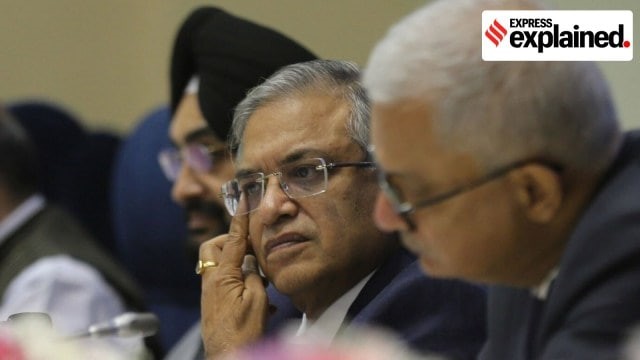
- 01 Nov 2025
In News:
The Election Commission of India (ECI) has initiated the Special Intensive Revision (SIR) 2025, a large-scale verification exercise aimed at ensuring that India’s electoral rolls remain accurate, inclusive, and up-to-date. Covering twelve States and Union Territories, this marks the most comprehensive revision of voter records in nearly two decades.
Purpose and Objectives
The SIR 2025 is designed to:
- Authenticate voter data to eliminate duplication and ineligible entries.
- Verify citizenship and age to ensure that only eligible Indian citizens remain on the rolls.
- Update demographic information such as addresses and photographs.
- Enhance transparency in the voter registration process and strengthen public trust in electoral institutions.
Through this exercise, the ECI seeks to uphold the Representation of the People Act, 1950, which mandates a clean and credible electoral register as the foundation of free and fair elections.
Implementation and Process
The revision process is being carried out by the Election Commission under the supervision of the Chief Election Commissioner and coordinated at the State and district levels through Chief Electoral Officers (CEOs), District Magistrates (DMs), and Electoral Registration Officers (EROs).
Key stages of the exercise include:
- Enumeration and Data Collection: Field officials known as Booth Level Officers (BLOs) visit households to distribute and collect pre-filled forms containing existing voter details.
Voters may also submit or verify their information online via the ECI’s voter portal. - Verification through Historical Records: Citizens are encouraged to confirm their or a family member’s presence in electoral rolls from earlier intensive revisions (2002–2005). This helps maintain continuity in the voter database and authenticate older registrations.
- Document-Based Scrutiny: In cases where a voter cannot trace prior records, documents proving identity, residence, age, and citizenship are reviewed. This ensures compliance with the Citizenship Act, 1955, particularly for voters born after 1987.
- Draft and Final Roll Publication: Following field verification, draft rolls are published for public inspection and correction. After resolving claims and objections, the final electoral rolls are released, forming the official list for upcoming elections.
Significance of the SIR 2025
- Reviving Electoral Accuracy: This is the first full-scale revision of voter rolls in nearly twenty years, addressing issues like outdated entries, migration, and data mismatches.
- Citizenship Assurance: The verification framework ensures that only legitimate Indian citizens exercise voting rights, strengthening electoral credibility.
- Technological Modernisation: Integration with digital platforms such as the ECI voter portal enhances accessibility and reduces manual errors.
- Transparency and Accountability: The participation of political party representatives as Booth Level Agents (BLAs) provides an additional layer of oversight.
- Foundation for Free and Fair Elections: A verified, inclusive, and error-free voter list is critical to maintaining the integrity of democratic processes and protecting voter rights.
UNEP Adaptation Gap Report 2025
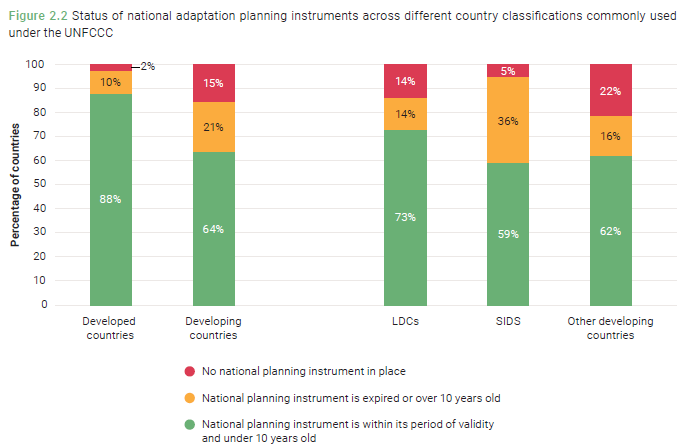
- 01 Nov 2025
In News:
The United Nations Environment Programme (UNEP) has released its flagship Adaptation Gap Report (AGR) 2025, titled “Running on Empty”.
The report warns that the global climate adaptation finance gap for developing countries has widened sharply, threatening progress toward climate resilience and the Sustainable Development Goals (SDGs).
About the Adaptation Gap Report (AGR)
- Publisher: UNEP–Copenhagen Climate Centre, with global institutional contributions.
- Purpose: Tracks progress in climate adaptation planning, implementation, and finance, assessing global preparedness against climate impacts.
- Relevance: Supports policy negotiations under the UNFCCC and upcoming COP30 (Belém, Brazil).
Key Findings
1. Escalating Finance Needs
- Developing nations will require USD 310–365 billion annually by 2035, potentially rising to USD 440–520 billion when adjusted for inflation.
- The growing need reflects increasing risks from both rapid- and slow-onset climate events—heatwaves, floods, sea-level rise, and glacial melt.
2. Widening Adaptation Finance Gap
- Current adaptation finance (2023): Only USD 26 billion, covering just one-twelfth of total requirements.
- Finance gap: USD 284–339 billion annually.
- Falling trends: Funding fell from USD 28 billion (2022), meaning the Glasgow Climate Pact target of doubling adaptation finance by 2025 will likely be missed.
3. Debt-Heavy and Unequal Finance
- About 58% of adaptation finance is in the form of loans, many non-concessional—deepening debt vulnerabilities among developing nations.
- This creates a growing risk of “adaptation debt traps”, undermining the principle of climate justice.
4. Progress and Planning Gaps
- 172 countries have at least one National Adaptation Plan (NAP); however, 36 of them are outdated.
- 1,600+ adaptation actions have been reported globally, primarily in agriculture, water, biodiversity, and infrastructure, but few measure tangible resilience outcomes.
- Small Island Developing States (SIDS) show the highest integration of adaptation into national policies.
5. Limited Private Sector Role
- The private sector contributes only USD 5 billion annually, despite potential investment capacity up to USD 50 billion with supportive de-risking mechanisms.
- Low engagement is attributed to high risk perceptions and limited blended-finance instruments.
6. Multilateral Fund Support
- Disbursements through the Green Climate Fund (GCF), Global Environment Facility (GEF), and Adaptation Fund reached USD 920 million in 2024—an 86% rise over the previous five-year average, though UNEP warns this may be temporary.
Global Frameworks and Roadmaps
Baku–Belém Roadmap (COP29–COP30)
- Envisions USD 1.3 trillion per year by 2035 in total climate finance.
- Stresses the need for grant-based and concessional instruments rather than debt-heavy finance.
- Aims to align finance, transparency, and adaptation under a “global collective effort” (mutirão global) led by Brazil’s COP30 presidency.
New Collective Quantified Goal (NCQG)
- Proposed USD 300 billion by 2035, but UNEP cautions that it is insufficient and not inflation-adjusted, hence failing to meet real adaptation needs.
India and the Adaptation Gap Report 2025
1. National and Regional Context
- India’s climate strategy now prioritises adaptation-centric policies over mitigation, focusing on resilient agriculture, water systems, and disaster management.
- Frequent heatwaves, floods, and glacial retreats heighten India’s vulnerability, underscoring the need for adaptive investments.
2. Policy and Institutional Response
- India’s National Action Plan on Climate Change (NAPCC) and State Action Plans align with UNEP’s adaptation priorities.
- Initiatives like the International Solar Alliance (ISA), Coalition for Disaster Resilient Infrastructure (CDRI), and LiFE Mission showcase India’s global leadership in climate diplomacy.
3. Financial and Structural Constraints
- India continues to face adaptation investment gaps, relying heavily on concessional and multilateral finance.
- Domestic efforts like the National Adaptation Fund for Climate Change (NAFCC) are under fiscal strain due to limited international flow.
4. Developmental Balancing
- India maintains that development precedes decarbonisation, in line with the principle of Common But Differentiated Responsibilities and Respective Capabilities (CBDR–RC).
- The Economic Survey 2024–25 reiterates that achieving developed-nation status by 2047 is essential before aggressive deep decarbonisation.
- India remains committed to Net Zero by 2070, consistent with its Long-Term Low Emissions Development Strategy (LT-LEDS).
EU–India New Strategic Agenda 2025
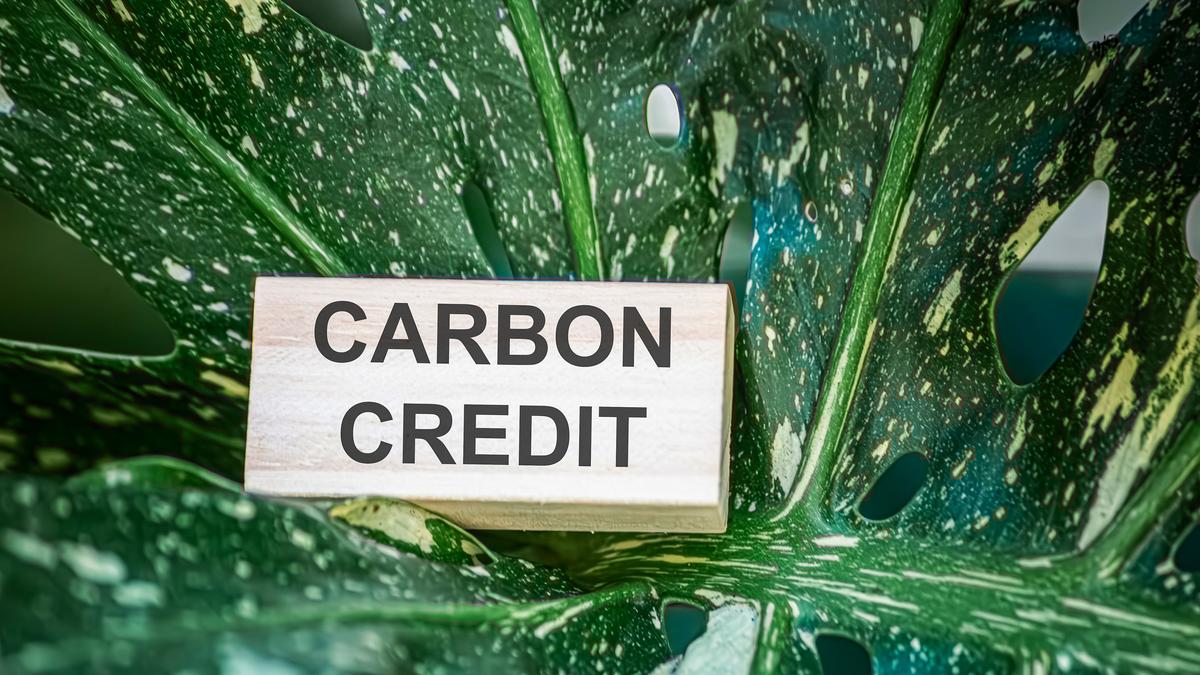
- 31 Oct 2025
In News:
- In September 2025, India and the European Union adopted the EU–India New Strategic Agenda 2025, a comprehensive vision document aimed at elevating their partnership into a transformative global framework for the next decade.
- Building upon the 2020 EU–India Strategic Partnership Roadmap, the new agenda broadens cooperation in sustainable development, digital governance, supply-chain resilience, connectivity, and defence.
- It is structured around five core pillars: Prosperity and Sustainability; Technology and Innovation; Security and Defence; Connectivity and Global Issues; and Enablers Across Pillars, reflecting a multidimensional partnership.
- A landmark development under this agenda is the decision to link the Indian Carbon Market (ICM)—formally India’s evolving Carbon Credit Trading Scheme (CCTS)—with the EU's Carbon Border Adjustment Mechanism (CBAM). This integration allows carbon prices paid within India to be deducted from CBAM levies at the EU border, potentially shielding Indian exporters from double taxation and incentivising early decarbonisation. If successfully implemented, the linkage would represent one of the most significant North–South climate cooperation efforts, setting a precedent for global carbon market integration.
Key Features of the New Strategic Agenda 2025
1. Prosperity & Sustainability
The agenda emphasises climate cooperation and green transition pathways:
- Joint clean energy transition initiatives including renewable energy, green hydrogen, and sustainable finance.
- Expansion of the Green Partnership, focused on technology transfer, co-investment, and carbon neutrality strategies.
- The carbon market linkage aims to align India’s carbon pricing framework with global standards and reduce trade frictions arising from CBAM enforcement.
2. Technology & Innovation
The EU and India plan deep cooperation across critical technologies:
- Collaboration in semiconductors, 5G/6G standardisation, quantum technologies, and AI ethics frameworks.
- Development of digital public infrastructure aligned with principles of privacy, transparency, and data protection.
3. Security & Defence
The agenda institutionalises a Security and Defence Partnership:
- Joint naval exercises, maritime domain awareness, and cybersecurity operations in the Indo-Pacific.
- Greater strategic alignment in the context of China’s increasing assertiveness and the need for secure maritime routes.
4. Connectivity & Global Issues
Cooperation includes:
- The EU’s Global Gateway Initiative and India’s participation in the India–Middle East–Europe Economic Corridor (IMEC).
- Infrastructure connectivity, supply-chain resilience, and sustainable transport systems.
5. Enablers Across Pillars: Enhanced mobility, education and research exchanges, and institutional dialogues strengthen long-term engagement.
Significance of Linking ICM with CBAM
The linkage is historically significant because it allows Indian carbon credits to be recognised within the EU’s border adjustment framework. This could:
- Prevent double carbon penalties on Indian exporters entering the EU market.
- Reward early decarbonisation by reducing CBAM-related costs.
- Provide a model for climate cooperation between developed and developing economies, addressing equity concerns embedded in global climate governance.
India–ASEAN Summit 2025
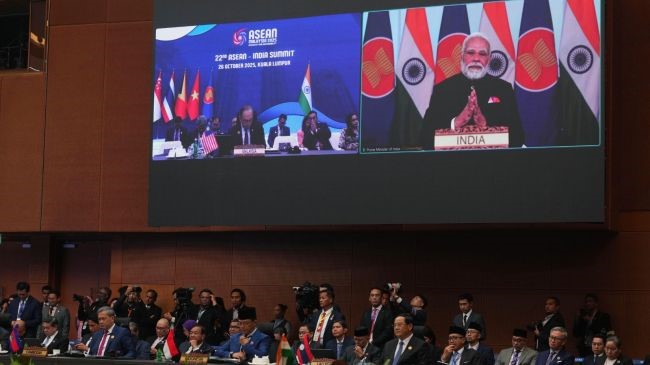
- 31 Oct 2025
In News:
- Prime Minister Narendra Modi virtually addressed the 22nd India–ASEAN Summit in Kuala Lumpur, reaffirming India’s commitment to enhancing cooperation in maritime security, digital inclusion, resilient supply chains, and economic integration.
- During the address, he announced that 2026 will be celebrated as the “ASEAN–India Year of Maritime Cooperation,” reflecting an intensified focus on the Indo-Pacific maritime domain. The remarks aligned with ASEAN’s theme under Malaysia’s chairmanship — “Inclusivity and Sustainability.”
Evolution of India–ASEAN Engagement
India’s engagement with ASEAN has evolved over more than three decades:
- 1992: Sectoral Dialogue Partnership initiated.
- 1996: Upgraded to Full Dialogue Partnership.
- 2002: India began regular participation in ASEAN Summits.
- 2009: ASEAN–India FTA in Goods (AITIGA) came into force;
- 2015: Services and Investment Agreements added.
- 2014 onwards: Transition from “Look East” to Act East Policy, increasing political, cultural and strategic connectivity.
- 2022: Partnership elevated to Comprehensive Strategic Partnership.
The partnership is grounded in shared civilisational links, especially through Buddhism, historical maritime routes, and cultural exchanges dating back to the Gupta and Srivijaya eras.
Recent Summit Highlights: Strategic Messaging
Despite PM Modi’s long-standing practice of physical participation in ASEAN summits, his virtual presence this year was noted as an unusual departure. Given the symbolic importance of leader-level diplomacy in ASEAN's consensus-driven ecosystem, some observers considered his absence a missed opportunity, especially amid strengthening bilateral ties with Malaysia after upgrading relations to a Comprehensive Strategic Partnership.
Nevertheless, PM Modi reaffirmed India’s intent to complement ASEAN’s Community Vision 2045 and India’s national vision of Viksit Bharat 2047, framing both as convergent long-term goals. He highlighted India’s role as a First Responder in regional crises, a position increasingly recognised across Southeast Asia.
Unlike previous years featuring extensive multi-point proposals, the 2025 address emphasised consolidation over expansion, centred primarily on maritime cooperation — a significant signal as the Philippines assumes ASEAN chairmanship in 2026 amid rising maritime tensions in the South China Sea.
Key Pillars of Cooperation
1. Maritime Security & Indo-Pacific Cooperation
- Joint patrols, coordinated naval exercises, and enhanced maritime domain awareness.
- Blue economy initiatives under the ASEAN–India Year of Maritime Cooperation (2026).
2. Economic Integration
- Review of the ASEAN–India Trade in Goods Agreement (AITIGA) to address market access constraints, streamline rules of origin, and reduce non-tariff barriers.
- Policymakers are urged to prioritise long-term regional integration over short-term protectionist anxieties.
3. Digital & Green Economy
- Cooperation in digital public infrastructure, cybersecurity, AI governance, renewable energy, green ports, and climate-resilient supply chains.
4. Connectivity Projects
- Acceleration of India–Myanmar–Thailand Trilateral Highway.
- Progress on the Kaladan Multi-Modal Transit Corridor, strengthening multimodal and economic connectivity.
5. Cultural Diplomacy & People-to-People Links
- ICCR scholarships, academic exchanges, tourism linkages, and the ASEAN–India Network of Think Tanks (AINTT).
- Emphasis on shared civilisational heritage and cultural exchanges.
Initiatives & Institutional Mechanisms
- ASEAN–India Plan of Action (2026–2030) focusing on trade, innovation, food security, agriculture, health, and education.
- India’s ?500 crore ASEAN–India Fund supporting capacity building, agriculture, and connectivity projects.
- Track 1.5 dialogue platforms reveal growing regional acknowledgement of India’s strategic role in Southeast Asia.
National Unity Day
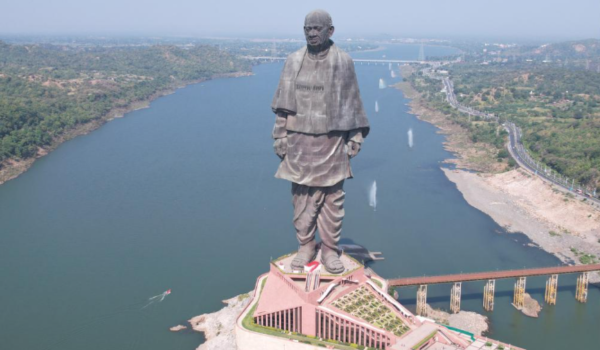
- 31 Oct 2025
In News:
- National Unity Day (Rashtriya Ekta Diwas) is observed annually on 31 October to mark the birth anniversary of Sardar Vallabhbhai Patel, India’s first Deputy Prime Minister and Home Minister.
- Introduced in 2014, the day highlights Patel's pivotal role in consolidating the nation by integrating over 560 princely states into the Indian Union at the time of Independence— a task that earned him the enduring title, the “Iron Man of India.”
- The year 2025 marks the 150th birth anniversary of Sardar Patel, and the commemorative events have been organised on an unprecedented scale at the Statue of Unity in Ekta Nagar, Gujarat, led by Prime Minister Narendra Modi.
- The celebrations highlight the theme “Unity in Diversity”, underscoring India’s multicultural character and the importance of national cohesion.
Historical Significance of Sardar Vallabhbhai Patel
- Born on 31 October 1875 in Nadiad, Gujarat, Patel initially practised law before joining the national movement under Mahatma Gandhi.
- His leadership in the Kheda Satyagraha (1918) and Nagpur Flag Satyagraha (1923) marked his rise as a mass leader.
- As President of the Ahmedabad Municipal Board (1924), he reformed urban infrastructure, sanitation and civic systems.
- The Bardoli Satyagraha (1928) elevated him to national prominence, earning him the honorific “Sardar.”
- At Independence, he was entrusted with unifying the 17 British provinces and integrating the princely states—an immense administrative and diplomatic feat.
- Served as Deputy Prime Minister and Home Minister (1947–1950) and also held charge of the Information and Broadcasting Ministry.
Cloud Seeding as a Pollution-Control Measure in Delhi

- 30 Oct 2025
In News:
With Delhi’s air quality plunging to severe levels each winter, the state government has renewed its call for cloud seeding as a potential intervention to reduce pollution. However, scientific assessments and governance experts warn that this approach offers limited, temporary relief and risks diverting attention from structural reforms required to address air pollution sustainably.
Why Delhi’s Air Quality Deteriorates in Winter
Delhi’s winter pollution is driven by a combination of meteorological and anthropogenic factors:
- Temperature Inversion: During winter, colder air remains trapped near the surface while warmer air lies above. This temperature inversion acts as a lid, preventing pollutants from rising and dispersing vertically.
- Low Wind Speeds: Weak winds limit horizontal movement of pollutants, causing particulate matter to accumulate in the lower atmosphere.
- Crop Residue Burning: Post-harvest stubble burning in Punjab, Haryana, and western Uttar Pradesh releases large quantities of smoke and suspended particles, which are carried to Delhi via prevailing winds.
- Dust and Urban Emissions: Vehicular emissions, construction dust, industrial exhaust, and waste burning remain trapped within the low boundary layer height, intensifying pollution.
- Post-Monsoon Stagnation: Stable high-pressure systems reduce atmospheric mixing, compounding North India’s chronic winter air quality problem.
What is Cloud Seeding?
Cloud seeding is a form of weather modification intended to enhance rainfall using chemical agents.
- Origin: First demonstrated in 1946 by Vincent J. Schaefer.
- Seeding Agents: Silver iodide, potassium iodide, sodium chloride, and dry ice are commonly used.
- Mechanism: The agents act as nuclei for condensation or ice-crystal formation, encouraging droplet growth. Once droplets become heavy, they fall as precipitation.
- Delivery Methods: Aircraft, rockets, or ground-based generators disperse particles into suitable moisture-laden clouds.
However, cloud seeding requires the presence of natural clouds with adequate moisture and cannot generate clouds on its own.
Scientific and Environmental Limitations
- Reliance on Existing Clouds: Delhi often lacks suitable cloud systems during peak pollution periods. Cloud seeding has no impact in the absence of adequate moisture.
- Weak Evidence of Effectiveness: Global scientific studies show inconsistent results. Even when rainfall occurs after seeding, establishing causality is difficult.
- Only Temporary Pollution Relief: Rain may wash away PM2.5 and PM10 temporarily, but pollution typically rebounds within 1–2 days. Secondary pollutants like ozone and sulphur dioxide remain unaffected.
- Environmental and Health Concerns: The use of silver iodide raises concerns regarding long-term ecological and health impacts due to chemical deposition. Evidence on safety is limited and inconclusive.
- Governance and Accountability Issues
- Unpredictable outcomes may lead to public criticism.
- Accountability becomes unclear if cloud seeding coincides with flooding or adverse weather events.
Ethical and Policy Concerns
- Misallocation of Resources: Investing in cloud seeding may divert funds from proven interventions.
- Distracting Public Attention: Temporary fixes risk undermining public trust and shifting focus away from systemic issues.
- Potential Misuse: Short-term optics may overshadow long-term environmental governance.
Real Solutions for Air Pollution Control
Experts emphasise that lasting improvement requires sustained structural action:
- Cleaner Transportation
- Strengthening public transport
- Transition to electric mobility
- Enforcing emission norms
- Sustainable Energy Transition
- Phasing down coal-based power
- Scaling up renewables
- Promoting clean industrial technologies
- Improved Waste Management
- Curbing open waste burning
- Efficient municipal systems
- Construction and Dust Control
- Enforcement of dust mitigation norms
- Use of green barriers and mechanised sweeping
- Agricultural Reforms
- Subsidising sustainable stubble management
- Promoting crop diversification in Punjab and Haryana
- Urban Planning Reforms
- Increasing green cover
- Reducing congestion through better mobility planning
VandeMataram – 150 Years Celebration
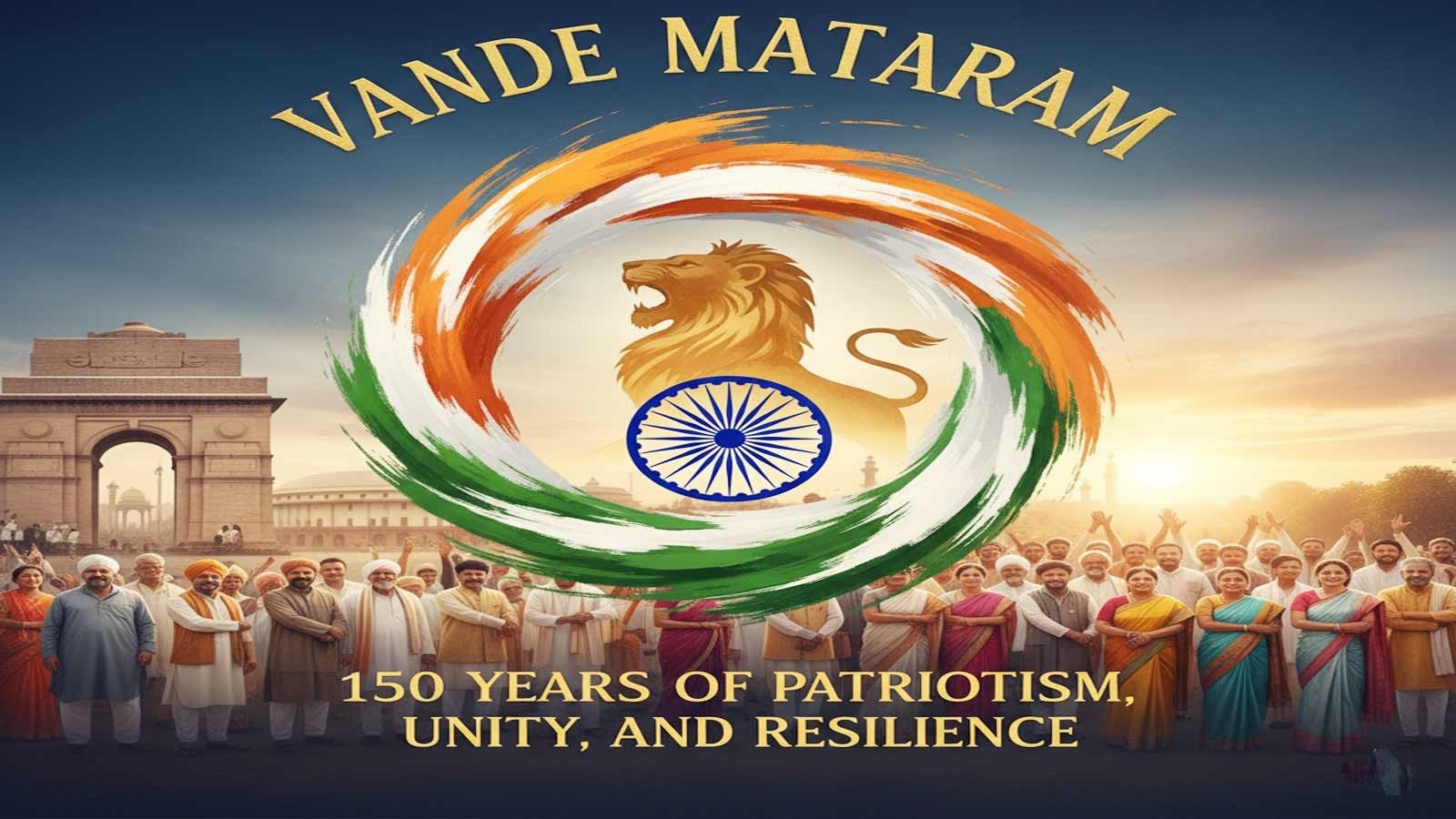
- 30 Oct 2025
In News:
Prime Minister Narendra Modi, in his October 2025 Mann Ki Baat address, called upon citizens to mark the 150th anniversary of VandeMataram.
Historical Origins and Evolution
- VandeMataram—meaning “I bow to thee, Mother”—was composed by Bankim Chandra Chattopadhyay in the 1870s in Sanskritised Bengali.
- It was later published in his novel Anandamath (1882), where the motherland was depicted symbolically as a divine, nurturing force.
- The song gained prominence during the freedom struggle. Its first public rendition was by Rabindranath Tagore at the 1896 Indian National Congress session, marking its transition from literary creation to a nationalistic anthem.
- Despite British censorship, it echoed across protest marches, swadeshi gatherings, and revolutionary movements, becoming an enduring symbol of defiance.
Role in National Movement and Political Debates
- During the early 20th century, the song became deeply embedded in anti-colonial resistance, especially during the Swadeshi Movement (1905) and later the Quit India Movement (1942). However, its later stanzas, portraying the motherland as a Hindu goddess, drew objections from the All-India Muslim League and some Muslim leaders.
- To maintain inclusivity, the Indian National Congress in 1937 officially adopted only the first two stanzas, which do not include religious imagery. This selective adoption reflected efforts to preserve unity in a diverse society.
- On 24 January 1950, the Constituent Assembly accorded equal honour to VandeMataram and Jana Gana Mana, defining the former as the national song and the latter as the national anthem.
Cultural, Symbolic and Constitutional Status
Today, VandeMataram holds a unique constitutional and cultural position:
- National Song Status: It enjoys the same respect as the national anthem as per Constituent Assembly resolutions.
- Parliamentary Tradition: An instrumental version is played at the end of every Parliament session.
- Cultural Identity: It continues to symbolise unity, patriotism, and emotional attachment to the motherland.
- Secular Projection: Emphasis remains on the first two stanzas to ensure inclusivity across religious communities.
- Judicial Affirmation: In 2022, the Delhi High Court reaffirmed that citizens should show equal respect to both the national anthem and national song.
East Timor Joins ASEAN
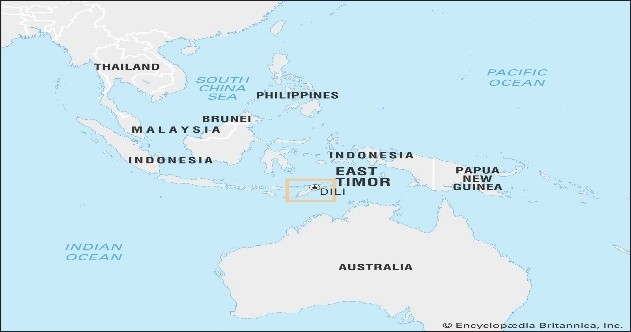
- 28 Oct 2025
In News:
East Timor (Timor-Leste) was formally admitted as the 11th member of the Association of Southeast Asian Nations (ASEAN) at the 47th ASEAN Summit in Kuala Lumpur, marking the organisation’s first expansion since the late 1990s.
Historical Milestone for East Timor
- Prime Minister Xanana Gusmão declared the moment “historic,” noting that ASEAN membership reflects both the aspirations and resilience of the Timorese people. President José Ramos-Horta, a Nobel Peace Prize laureate, and Gusmão—both icons of the independence movement—lead the nation as it navigates socio-economic challenges such as high unemployment, persistent malnutrition, and widespread poverty (with 42% of the population living below the national poverty line).
- East Timor’s journey to statehood has been arduous. A former Portuguese colony for over four centuries, it declared independence in 1975, only to face a 24-year occupation by Indonesia that claimed tens of thousands of lives. AUN-supervised referendum in 1999 paved the way to sovereignty, which was finally restored in 2002, making it one of the world’s youngest nations.
Why East Timor’s ASEAN Membership Matters
Malaysian Prime Minister Anwar Ibrahim, chairing the summit, emphasised that East Timor’s entry “completes the ASEAN family,” reflecting shared regional identity and a commitment to equitable growth. Analysts view the expansion as a declaration of ASEAN’s inclusivity and adaptability, especially amid global geopolitical volatility and rising protectionism.
Membership grants East Timor greater access to:
- ASEAN’s free trade arrangements
- Regional investment opportunities
- Broader markets and labour mobility
- Platforms for cooperation in education, technology, and digital economy
For a small, resource-dependent nation with a youthful demographic—nearly two-thirds of its people are under 30—ASEAN integration offers new possibilities for job creation, capacity building, and economic diversification. With oil and gas reserves declining, the government seeks fresh pathways for economic resilience.
East Timor: Key Facts
- Official Name: Democratic Republic of Timor-Leste
- Location: Eastern half of Timor Island in the Malay Archipelago; bordered by Indonesia and the Timor Sea
- Capital: Dili
- Geography: Mountainous terrain; highest peak Mount Tatamailau (2,963 m); tropical climate; rich biodiversity
- Population: ~1.4 million
- Economy: Predominantly dependent on hydrocarbons
East Timor applied for ASEAN membership in 2011 and was granted observer status in 2022, culminating in full accession in 2025.
About ASEAN and Its Relevance
- The Association of Southeast Asian Nations (ASEAN) is a regional intergovernmental organisation established in 1967 with the signing of the Bangkok Declaration by Indonesia, Malaysia, the Philippines, Singapore, and Thailand. Its headquarters is located in Jakarta, Indonesia.
- Current Membership (11 Countries):Indonesia, Malaysia, Philippines, Singapore, Thailand, Brunei, Vietnam, Laos, Myanmar, Cambodia, and East Timor.
- Core Goals:
- Promote political stability through dialogue and diplomacy
- Advance economic integration via AFTA and RCEP
- Strengthen cooperation on climate change, disaster response, and transnational threats
- Foster socio-cultural exchange and people-to-people connectivity
- Engage global powers through mechanisms like ASEAN+3 and East Asia Summit (EAS)
Significance for Regional Dynamics
East Timor’s accession:
- Reinforces ASEAN’s commitment to regionalism and openness, countering trends of protectionism
- Expands the bloc’s political influence and strengthens its collective strategic posture
- Enhances ASEAN’s identity as a community representing diverse political and economic systems
- Encourages equitable development within the region’s smallest and youngest member state
Operation Fire Trail
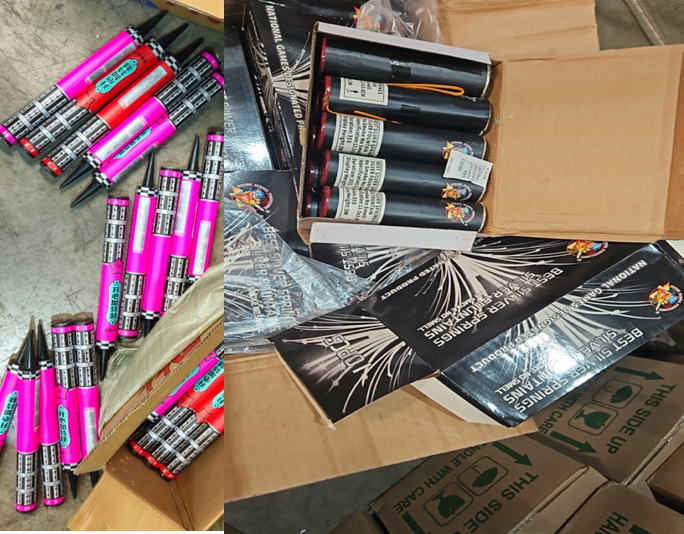
- 28 Oct 2025
In News:
The Directorate of Revenue Intelligence (DRI), under the Ministry of Finance, continues its nationwide anti-smuggling campaign titled “Operation Fire Trail”, aimed at curbing the illegal import of hazardous foreign-origin firecrackers into India. The operation focuses on intercepting smuggling networks that violate India’s trade regulations, safety norms, and environmental standards.
About Operation Fire Trail
- Nature of Operation:Operation Fire Trail is an intelligence-driven enforcement initiative designed to detect and prevent the illegal entry of non-compliant Chinese firecrackers into India. These pyrotechnic materials often contain harmful chemicals, posing severe risks to public health, safety, and the environment.
- Implementing Agency:The operation is carried out by the Directorate of Revenue Intelligence (DRI)—India’s apex anti-smuggling agency.
- Objectives:
- To dismantle organised smuggling syndicates involved in routing foreign firecrackers into India using false declarations.
- To enforce compliance with licensing norms mandated by the Directorate General of Foreign Trade (DGFT) and Petroleum and Explosives Safety Organisation (PESO) under the Explosives Rules, 2008.
- To strengthen India’s customs surveillance and safeguard national security.
Recent Seizure at Nhava Sheva Port
In one of the largest seizures during the ongoing operation, DRI intercepted a 40-foot container at Nhava Sheva port that had originated from China. The consignment, falsely declared as containing "leggings," was destined for ICD Ankleshwar.
A detailed examination revealed:
- 46,640 pieces of smuggled Chinese-origin firecrackers.
- Total estimated value: ?4.82 crore.
- Firecrackers were concealed behind a thin layer of garments to evade detection.
Subsequent raids led to the confiscation of incriminating documents exposing the smuggling syndicate’s modus operandi. A key suspect from Veraval, Gujarat, was arrested, marking a major breakthrough in the case.
Legal and Regulatory Framework
- Import of firecrackers into India is classified as “Restricted” under the ITC (HS) classification of the Foreign Trade Policy.
- Legitimate imports require:
- Valid DGFT licence, and
- Approval from PESO under the Explosives Rules, 2008.
- Smuggling of non-compliant fireworks bypasses these safeguards and introduces hazardous substances into the domestic market.
Significance of the Crackdown
- Protection of Public Safety: Smuggled firecrackers are often made using unsafe chemical compositions. Their uncontrolled entry poses serious risks of fire, explosions, and injury.
- Safeguarding Port and Supply Chain Infrastructure: Hazardous consignments threaten critical port infrastructure, warehouse safety, and logistics operations.
- Strengthening Enforcement Capacity: Operation Fire Trail enhances India’s intelligence-led enforcement, boosts customs vigilance, and disrupts transnational smuggling networks.
- Environmental Protection: Many imported Chinese firecrackers release toxic pollutants, violating environmental norms. Curtailing their inflow supports India’s pollution-control efforts.
- Supporting Domestic Manufacturing: The operation discourages cheap illegal imports and promotes domestic, compliant firecracker production aligned with safety and environmental regulations.
Deendayal Antyodaya Yojana – National Rural Livelihoods Mission (DAY-NRLM)
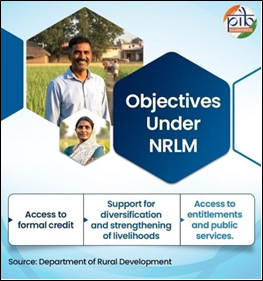
- 26 Oct 2025
In News:
The Deendayal Antyodaya Yojana – National Rural Livelihoods Mission (DAY-NRLM), implemented by the Ministry of Rural Development (MoRD), stands as one of the world’s largest poverty alleviation and women-centric livelihood programmes. It has successfully mobilized millions of rural households into community institutions and significantly advanced the agenda of women’s empowerment, financial inclusion, and sustainable rural livelihoods.
Genesis and Evolution
- Launch: Initially introduced in 2010 as the National Rural Livelihoods Mission (NRLM) by restructuring the Swarnajayanti Gram Swarozgar Yojana (SGSY).
- Renaming: In 2016, it was renamed Deendayal Antyodaya Yojana – National Rural Livelihoods Mission (DAY-NRLM) to honour the philosophy of Antyodaya—uplifting the poorest of the poor.
- Funding Pattern: It is a Centrally Sponsored Scheme, jointly funded by the Central and State Governments.
- Objective: To reduce rural poverty by enabling poor households to access self-employment and skilled wage employment opportunities, ensuring diversified and sustainable livelihoods.
Core Objectives
The mission seeks to empower rural communities by investing in four key pillars:
- Social Mobilisation& Institution Building: Organizing rural poor, especially women, into Self-Help Groups (SHGs) and federations for mutual support and long-term empowerment.
- Financial Inclusion: Ensuring access to formal credit and financial services through community-based intermediaries like Bank Sakhis and Banking Correspondent Sakhis.
- Sustainable Livelihoods: Promoting both farm and non-farm livelihoods including agriculture, livestock, handicrafts, and microenterprises.
- Social Development & Convergence: Addressing gender, nutrition, health, sanitation, and social justice through convergence with other government programmes.
Women-Centric Model
Women are at the heart of DAY-NRLM. The mission focuses on collectivizing women into SHGs, enhancing their entrepreneurial capacity, and connecting them to markets, technology, and credit networks.
- Scale: As of June 2025, the mission has mobilized 10.05 crore rural households into 90.9 lakh SHGs across 28 States and 6 UTs.
- Financial Empowerment: Over ?11 lakh crore has been disbursed to SHGs through formal banking systems, backed by collateral-free loans and interest subvention, with a 98% repayment rate — a testament to the model’s sustainability.
- Community Cadres: SHG women are trained as Community Resource Persons (CRPs) such as
- Krishi Sakhis – agricultural extension support,
- PashuSakhis – animal health and livestock management,
- Bank Sakhis – financial inclusion facilitators,
- BimaSakhis – insurance and welfare access agents.
- Over 3.5 lakh Krishi and PashuSakhis and 47,952 Bank Sakhis have been deployed to deliver last-mile services.
Entrepreneurship and Microenterprise Development
To promote local entrepreneurship, the Mission runs the Start-up Village Entrepreneurship Programme (SVEP), supporting 3.74 lakh rural enterprises across 282 blocks.
These enterprises cover diverse sectors like handicrafts, food processing, agro-based units, and rural services — encouraging self-reliance and community-led growth.
A remarkable example is of Heinidamanki Kanai from Meghalaya, who turned her SHG training into a successful handmade soap business with bank support under NRLM — a model of grassroots entrepreneurship.
Skill Development and Employment Initiatives
DAY-NRLM implements two major Centrally Sponsored Schemes to boost rural employability and entrepreneurship:
- DeenDayal Upadhyaya Grameen Kaushalya Yojana (DDU-GKY)
- Provides placement-linked skill training for rural youth aged 15–35 years.
- 17.50 lakh trained and 11.48 lakh placed as of June 2025.
- Top-performing states: Uttar Pradesh, Odisha, and Andhra Pradesh.
- Rural Self Employment Training Institutes (RSETIs)
- Bank-sponsored centres for youth aged 18–50 years, providing entrepreneurship training and promoting both self- and wage-employment.
- 56.69 lakh candidates trained,40.99 lakh settled in gainful employment.
- Leading states: Uttar Pradesh, Rajasthan, Madhya Pradesh, and Karnataka.
Achievements and Outcomes
High-Performing States:
- Bihar, Uttar Pradesh, Andhra Pradesh (SHG formation and financial inclusion).
- Maharashtra, Uttar Pradesh, Andhra Pradesh (agro-ecological initiatives under MahilaKisanprogrammes).
- Assam, Kerala, and West Bengal (microenterprise promotion under SVEP).
Capacity Building and Marketing Initiatives
To strengthen entrepreneurship and market readiness:
- SARAS Aajeevika Melas (National & State-level fairs) are organized annually to showcase SHG products and build marketing skills.
- The National Institute of Rural Development and Panchayati Raj (NIRD&PR) conducts Training of Trainers (ToT)programmes on marketing, having trained over 44 batches in the past three years.
- These initiatives bridge rural producers with urban consumers and e-commerce platforms, enhancing rural incomes.
Impact on Rural Transformation
- Economic Empowerment: Enhanced access to credit and markets has diversified income sources for millions of women.
- Social Transformation: SHG networks now play a role in local governance, social awareness, and addressing gender issues such as domestic violence, health, and education.
- Financial Inclusion: The presence of SHG-led financial intermediaries ensures doorstep access to savings, credit, and insurance.
- Sustainable Livelihoods:Agro-ecological practices, livestock management, and non-farm enterprises are reducing ecological stress and enhancing resilience.
Challenges Ahead
- Uneven implementation across states and regions.
- Need for stronger digital monitoring and credit tracking.
- Enhancing market linkages for SHG products.
- Integrating livelihood programmes with emerging green and climate-resilient models.
Conclusion
The Deendayal Antyodaya Yojana – National Rural Livelihoods Mission (DAY-NRLM) exemplifies inclusive, women-led rural development. By mobilizing millions of women into strong community institutions, linking them with finance and skills, and promoting sustainable livelihoods, it has transformed the socio-economic fabric of rural India.
As a global model of community-driven development, the Mission continues to advance India’s vision of “Atmanirbhar Bharat” by empowering its most vulnerable citizens to become entrepreneurs, leaders, and change-makers in their own right.
Sevilla Forum on Debt
- 25 Oct 2025
In News:
At the 16th United Nations Conference on Trade and Development (UNCTAD16) held in Geneva, the Sevilla Forum on Debt was officially launched — marking a major international step towards tackling the global sovereign debt crisis and promoting fair, sustainable debt solutions for developing economies.
About the Sevilla Forum on Debt
- Launched by: The Government of Spain, with support from UNCTAD and the UN Department of Economic and Social Affairs (UN DESA).
- Event: Announced at UNCTAD16 (October 2025) in Geneva.
- Part of: The Sevilla Platform for Action, building upon commitments made during the Fourth International Conference on Financing for Development (FfD4).
Aim and Objectives
- To create an open, inclusive, and action-oriented space for dialogue on sovereign debt reform.
- To connect all stakeholders—creditors, borrowers, multilateral institutions, civil society, and academia—towards developing innovative, fair, and sustainable debt management frameworks.
- To track and implement the debt-related initiatives agreed upon in the Sevilla Commitment, ensuring political pledges are translated into institutional mechanisms.
Context: The Global Debt Challenge
- Public debt worldwide reached $102 trillion in 2024, with developing countries accounting for $31 trillion of that burden.
- Developing nations paid around $921 billion in interest payments — surpassing their combined public spending on health and education.
- According to UNCTAD, over 3.4 billion people now live in countries where debt servicing outweighs essential social expenditure, underscoring the need for systemic reform of the global debt architecture.
Key Features of the Sevilla Forum
- Bridge Between Borrowers and Creditors:
- Acts as a neutral hub facilitating candid discussions between debtor nations and lenders.
- Encourages transparency, responsible borrowing, and fair lending practices.
- Catalyst for Global Action:
- Sustains political attention on debt-related agreements under the Sevilla Commitment.
- Supports coordinated multilateral action to ensure predictable and equitable debt governance.
- Knowledge Exchange Platform:Brings together policymakers, economists, and institutions to develop and share innovative debt management solutions, including debt-for-climate and debt-for-development swaps.
- Linked Initiatives by Spain:
- Debt Pause Clause Alliance: Promotes temporary suspension of debt payments for nations in crisis.
- Global Hub for Debt Swaps: Facilitates conversion of debt obligations into sustainable development investments.
Significance
- For Developing Countries: Offers a collective voice and platform to advocate for debt justice and reform of the global financial architecture.
- For Global Governance: Reinforces multilateralism through UN-led cooperation between creditors and borrowers.
- For Sustainable Development: Aligns with Agenda 2030 by linking debt relief with social and climate investments, particularly SDG 8 (Decent Work & Economic Growth) and SDG 17 (Partnerships for the Goals).
About UNCTAD
- Full Form: United Nations Conference on Trade and Development
- Established: 1964 by the UN General Assembly
- Headquarters: Geneva, Switzerland
- Mandate: To help developing countries leverage trade, finance, and technology for inclusive and sustainable development.
- Core Functions:
- Economic and trade analysis
- Consensus-building among nations
- Technical assistance for policy and institutional strengthening
- Major Reports:
- Trade and Development Report
- World Investment Report
- The Least Developed Countries Report
Intrusion Detection System
- 25 Oct 2025
In News:
The Northeast Frontier Railway (NFR) has successfully completed trial works of the Intrusion Detection System (IDS) across four key railway sections in Assam and West Bengal to prevent elephant fatalities due to train collisions.
About the Intrusion Detection System (IDS)
The Intrusion Detection System (IDS) is a cutting-edge initiative of the Northeast Frontier Railway (NFR) under the Ministry of Railways, aimed at protecting wildlife—particularly elephants—while ensuring smooth and efficient railway operations through forested and ecologically sensitive zones.
Objective
- To minimize elephant deaths caused by train collisions along railway lines intersecting elephant corridors.
- To balance operational efficiency with ecological conservation, aligning with India’s broader goals of sustainable infrastructure and biodiversity protection.
Technology and Working
- Technology Used: IDS employsadvanced optical fibre sensing technology installed parallel to railway tracks at a distance of around 10 metres.
- Functioning:
- The system detects vibrations generated by elephant movement near railway tracks.
- These vibrations are captured by sensor cables, which relay the data to a central control room.
- The system then generates real-time alerts for train drivers and control rooms, enabling them to take immediate preventive actions, such as slowing down or halting trains.
This real-time detection mechanism ensures timely intervention and minimizes human-wildlife conflict along railway routes.
Implementation by NFR
The Intrusion Detection System has been successfully implemented in the following pilot sections:
- Madarihat–Nagrakata section (Alipurduar Division)
- Habaipur–Lamsakhang–Patharkhola–Lumding section (Lumding Division)
- Kamakhya–Azara–Mirza section (Rangiya Division)
- Titabar–Mariani–Nakachari section (Tinsukia Division)
- Coverage:The pilot installations collectively span 64.03 km of elephant corridors and 141 km of block sections, marking a significant step in NFR’s ongoing wildlife protection efforts.
Significance
- Wildlife Protection: Helps prevent accidental elephant deaths, promoting coexistence between rail infrastructure and biodiversity.
- Operational Efficiency: Enhances train safety by providing advance alerts, reducing service disruptions.
- Technological Advancement: Demonstrates the integration of AI and fibre-optic sensing in railway operations.
- Environmental Responsibility: Reflects the government’s commitment to sustainable development goals (SDGs), particularly those related to life on land (SDG-15) and industry, innovation and infrastructure (SDG-9).
Doctrine of Lis Pendens

- 23 Oct 2025
In News:
The Delhi High Court has recently ruled that courts possess the discretion to exempt a property from the application of the doctrine of lis pendens under certain circumstances. The decision aims to protect genuine property owners from vexatious or frivolous litigation that seeks to unjustly restrict the transfer or enjoyment of property rights.
About the Doctrine of Lis Pendens
- The term Lis Pendens is derived from Latin, meaning “pending litigation.”
- In India, the doctrine is codified under Section 52 of the Transfer of Property Act (TPA), 1882.
- The principle holds that any transfer of immovable property during the pendency of a legal dispute concerning that property will be subject to the outcome of the litigation.
- The doctrine does not invalidate the transfer but makes it subordinate to the result of the pending case.
- Its primary objective is to prevent one party from defeating the rights of another through the transfer of the disputed property while the court proceedings are ongoing.
Essence and Legal Rationale
- The doctrine seeks to maintain the status quo of property ownership during litigation, ensuring that the final judgment of a competent court remains effective despite any transactions made during the pendency of the case.
- It prevents the multiplicity of proceedings and protects the interests of the rightful claimant, as the transferee of such property is bound by the court’s decree.
Key Conditions for Applicability
- A suit or proceeding must be pending before a court of competent jurisdiction.
- The dispute must directly relate to the title or rights of an immovable property.
- The property must be specifically identifiable and properly described in the suit.
- The transfer of the property must occur during the pendency of the litigation.
- The suit must be bona fide, i.e., not collusive or fraudulent in nature.
If these conditions are met, any transfer made during the lawsuit will not override the court’s final decision.
Non-Applicability of the Doctrine
The doctrine does not apply in certain cases, including:
- When the mortgagor transfers property under a power explicitly granted in the mortgage deed.
- When the transfer affects only the transferor’s interest and not the other party’s rights.
- In collusive suits—where the proceedings are staged to defraud others.
- When the property is not properly described, making its identification impossible.
- Where the right to the property is not directly in dispute and alienation has been permitted.
Recent Delhi High Court Ruling
- A Division Bench of the Delhi High Court, led by Justice Anil Kshetarpal, clarified that the doctrine of lis pendens is not absolute and can be relaxed by judicial discretion.
- The Court held that in cases where litigation is filed with mala fide intent or used as a tool to harass legitimate owners, the court may exempt the concerned property from the operation of the doctrine to protect bona fide ownership and prevent misuse of legal processes.
- This interpretation strengthens the judiciary’s power to distinguish genuine disputes from vexatious claims, thereby ensuring fairness and efficiency in property litigation.
Significance of the Judgment
- Protects Genuine Owners: Shields rightful property holders from baseless legal actions aimed at stalling legitimate transactions.
- Prevents Misuse of Law: Discourages abuse of the doctrine for fraudulent or extortionate purposes.
- Balances Rights and Justice: Ensures that while the doctrine maintains judicial control over disputed properties, it does not become a weapon against bona fide parties.
- Clarifies Judicial Discretion: Affirms that courts have the inherent authority to exclude specific cases from the doctrine’s ambit when equity demands.
Impact of a Coronal Mass Ejection on the Lunar Exosphere
- 22 Oct 2025
In News:
- In a landmark discovery, the Indian Space Research Organisation (ISRO) announced that Chandrayaan-2’s orbiter has, for the first time, recorded the impact of a Coronal Mass Ejection (CME) from the Sun on theMoon’s exosphere — the thin, outermost layer of its atmosphere.
- The finding, made using the CHACE-2 (Chandra’s Atmospheric Composition Explorer-2) payload, marks a significant step in understanding how solar activity influences airless celestial bodies like the Moon.
About the Observation
- The CHACE-2 instrument, aboard Chandrayaan-2’s orbiter, detected a sharp rise in total pressure and molecular density in the Moon’s sunlit exosphere during a CME event on 10 May 2024.
- This observation confirmed, for the first time, theoretical predictions about how high-energy solar emissions affect the Moon’s extremely tenuous atmosphere.
- The findings were published in the journal Geophysical Research Letters (August 2025) under the title “Impact of a Coronal Mass Ejection on the Lunar Exosphere as Observed by CHACE-2 on the Chandrayaan-2 Orbiter.”
Understanding Coronal Mass Ejections (CMEs)
- CMEs are massive bursts of charged particles — primarily ionized hydrogen and helium — ejected from the Sun’s corona.
- When directed toward planetary bodies, these particles can interact with their atmospheres or surfaces, causing chemical and physical changes.
- On Earth, CMEs are often linked with geomagnetic storms and auroras, but their influence on airless bodies like the Moon had remained largely unobserved until this study.
The Lunar Exosphere: Nature and Composition
- The Moon’s atmosphere is so thin that it is classified as an exosphere — a region where individual gas atoms and molecules rarely collide.
- The boundary of the lunar exosphere directly touches the Moon’s surface, making it a “surface-boundary exosphere.”
- It is primarily composed of trace elements such as helium, argon, sodium, and potassium, released through processes like:
- Solar wind interactions (bombardment by charged particles),
- Photon-stimulated desorption (solar radiation freeing surface atoms), and
- Micrometeorite impacts (which vaporize surface material).
- Since the Moon lacks a global magnetic field, its exosphere is directly exposed to solar wind and CMEs, making it a natural laboratory for studying space-weather effects.
Chandrayaan-2 Mission Overview
- Launch Date: 22 July 2019, by GSLV-Mk III-M1 from Sriharikota.
- Components: Orbiter, Lander (Vikram), and Rover (Pragyan).
- Although communication with the lander was lost during descent on 7 September 2019, the orbiter remains fully operational in a 100 km × 100 km lunar orbit.
- Objective of CHACE-2: To analyse the composition, distribution, and temporal variability of the Moon’s neutral exosphere.
Key Findings of the Observation
- During the May 2024 CME event, CHACE-2 recorded a ten-fold increase in the number density of neutral atoms and molecules in the Moon’s dayside exosphere.
- The total pressure in the exosphere rose sharply, indicating enhanced release of surface atoms due to direct CME particle bombardment.
- The results provided empirical validation for long-held theoretical models on solar-lunar interactions.
- This was the first direct evidence of how the Moon’s atmospheric conditions respond dynamically to solar events.
Significance of the Discovery
- Scientific Advancement:
- Deepens understanding of space weather phenomena and their effects on airless celestial bodies.
- Offers valuable insights into Sun–Moon interactions and how charged solar particles shape planetary exospheres.
- Operational Relevance:
- Enhances the ability to predict and model space-weather impacts on future lunar missions and human habitats planned by 2040.
- Helps design radiation-resistant systems for lunar surface operations.
- Strategic and Technological Implications:
- Reinforces India’s growing expertise in planetary science and space environment monitoring.
- Demonstrates the long-term operational success of the Chandrayaan-2 orbiter, even years after its launch.
- Global Collaboration Potential:The findings can inform international lunar missions, including NASA’s Artemis and JAXA’s SLIM, contributing to a shared understanding of lunar space weather dynamics.
Japan Elects First Female Prime Minister
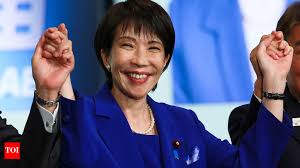
- 22 Oct 2025
In News:
- Recently, Japan’s National Diet elected Sanae Takaichi as its new Prime Minister, making her the first woman to hold that office in the nation’s history.
- Her ascent comes amid a shifting political backdrop, as the long-governing Liberal Democratic Party (LDP) lost its outright majority and secured a coalition with the Japan Innovation Party (Ishin).
Her appointment is notable not only for the gender milestone but also for signaling a potential policy shift—especially in Japan’s defence, economy and Indo-Pacific diplomacy.
Structural & Governance-Related Aspects
- Japan is a parliamentary constitutional monarchy. The Prime Minister is the real executive authority and is accountable to the lower house (House of Representatives).
- Her government is a minority coalition: the LDP formed an alliance with the Japan Innovation Party after the LDP-Komeito coalition collapsed. Thus, the new administration lacks a comfortable majority and will face legislative challenges.
- Despite her historic election, her cabinet contains only two women, raising questions about the depth of the gender-breaking moment for Japanese politics.
Key Challenges Ahead
- Economic recovery – Japan faces slow growth, inflationary pressures and demographic headwinds. Takaichi has pledged stimulus measures along the lines of previous “Abenomics”-style policies.
- Defence & security – With rising regional tensions, she is expected to push for higher defence spending and deeper coordination with the U.S. and Quad partners. Her first face-to-face diplomatic test includes welcoming U.S. President Donald Trump.
- Gender & social policy expectations – While she broke a barrier as Japan’s first female PM, her conservative positions on issues like same-sex marriage, imperial succession and women’s representation have drawn criticism.
- Policy implementation in a fragmented parliament – With no clear majority, passing major reforms will require coalition-building or compromises with opposition parties, marking a potential shift from LDP’s dominance.
Significance for India and the Indo-Pacific
From the Indian perspective—relevant to GS Paper II on International Relations—Takaichi’s election holds importance:
- Japan remains a key partner for India in the Indo-Pacific region, including in frameworks such as the Quad and supply-chain resilience initiatives.
- Her commitment to stronger defence and security cooperation with allies resonates with India’s own strategic concerns in the Indo-Pacific maritime domain.
- A stable, assertive Japan aligns with India’s interest in sustaining a free, open and rules-based maritime order.
The New Arc of India–Australia Collaboration
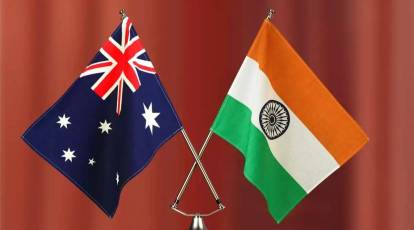
- 22 Oct 2025
In News:
India and Australia have entered a new phase of strategic and defence engagement, marked by Defence Minister Rajnath Singh’s visit to Canberra and Sydney for the inaugural India–Australia Defence Ministers’ Dialogue (2025). This was the first such visit by an Indian Defence Minister in over a decade, signifying a decisive step from declaratory convergence to operational cooperation.
Evolution of the Partnership
- Strategic Convergence: India and Australia’s partnership is rooted in shared democratic values and mutual commitment to a free, open, and rules-based Indo-Pacific. Concerns over China’s assertive behaviour and the erosion of maritime norms have driven cooperation through the Quad (India, Australia, Japan, U.S.) and bilateral ministerial dialogues since the elevation of ties to a Strategic Partnership (2009) and later a Comprehensive Strategic Partnership (CSP) in 2020.
- Operational Deepening:The relationship expanded beyond political rhetoric to practical cooperation through joint exercises such as Talisman Sabre, air-to-air refuelling arrangements, and logistics support agreements. These efforts laid the groundwork for interoperability and joint operational mechanisms.
- Industrial and Logistics Convergence:Both nations are now focusing on defence industrial collaboration, joint ship repair and maintenance, and supply-chain resilience. This industrial alignment reflects a shift from episodic engagement to a sustainable, institutionalised defence ecosystem.
Key Agreements and Mechanisms (2025)
- Joint Maritime Security Collaboration Roadmap– Strengthens maritime surveillance, domain awareness, and coordinated patrols across the Indo-Pacific.
- Mutual Submarine Rescue Support Arrangement– Establishes frameworks for joint underwater rescue, enhancing naval safety and contingency response.
- Air-to-Air Refuelling Agreement (2024)– Expands tactical endurance, enabling longer joint missions and greater air interoperability.
- Annual Defence Ministers’ Dialogue & Joint Staff Talks– Institutionalises defence cooperation and ensures continuity beyond political cycles.
- Defence Industry Roundtables– Promotes co-production, joint R&D, and mutual fleet maintenance, supporting an integrated defence industrial base.
Drivers of the Deepening Partnership
- Strategic Drivers: The shifting balance of power in the Indo-Pacific and China’s coercive regional posture have encouraged both nations to close operational gaps and coordinate maritime preparedness.
- Pragmatic Considerations: Both India and Australia seek to diversify their security dependencies, reducing overreliance on single external providers. Mechanisms such as logistics sharing, submarine rescue cooperation, and industrial collaboration build self-reliance and reduce friction during crises.
Industrial and Technological Synergy
- India’s strengths: Scalable defence production under Make in India and Innovations for Defence Excellence (iDEX), achieving record output of ?1.5 lakh crore (FY 2024–25).
- Australia’s strengths: Advanced maritime platforms like P-8A Poseidon, MQ-4C Triton, and Ghost Shark autonomous submarine, supported by strong R&D.
Together, they form a complementary ecosystem combining India’s scale and cost-efficiency with Australia’s technological sophistication.
Strategic and Industrial Significance
|
Dimension |
Impact |
|
Maritime Security |
Enhances sea-lane protection, freedom of navigation, and coordinated patrols across the Indian Ocean and Western Pacific. |
|
Defence Production Linkages |
Strengthens regional supply chains through joint repair, co-production, and maintenance facilities. |
|
Technological Complementarity |
Merges India’s production base with Australia’s innovation-driven R&D for advanced systems. |
|
Institutional Strengthening |
Annual dialogues and Joint Staff Talks ensure long-term continuity of defence cooperation. |
|
Regional Balance |
Reinforces Quad’s strategic cohesion and promotes a transparent, rules-based Indo-Pacific architecture. |
Scheme for Innovation and Technology Association with Aadhaar
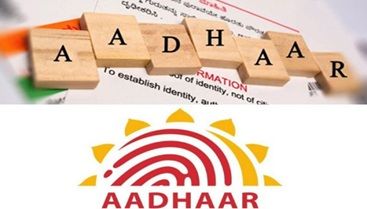
- 18 Oct 2025
In News:
- The Unique Identification Authority of India (UIDAI) has launched the Scheme for Innovation and Technology Association with Aadhaar (SITAA) to advance India's digital identity framework and safeguard Aadhaar against evolving cyber threats, particularly AI-driven deepfakes, spoofing, and biometric fraud.
- The initiative reflects India's objective to build secure, scalable, indigenous, and globally benchmarked identity solutions, aligning with the broader vision of Digital Public Infrastructure and Atmanirbhar Bharat.
Key Objectives
- Strengthen the security and reliability of Aadhaar authentication.
- Develop cutting-edge biometric and AI-based security technologies.
- Foster collaboration among startups, academia, and industry for co-development.
- Encourage indigenization of identity-tech solutions.
- Build future-ready digital identity systems capable of countering emerging threats.
Strategic Partnerships
To operationalize the programme, UIDAI has partnered with:
- MeitY Startup Hub (MSH) – for technical mentoring, incubation and accelerator support.
- NASSCOM – for industry linkages, global outreach, and entrepreneurship support.
Pilot Phase Focus Areas
The SITAA pilot has launched three innovation challenges open to eligible startups, research institutions, and industry partners (applications open till 15 November 2025):
|
Challenge |
Objective |
Key Requirements |
|
Face Liveness Detection |
Prevent spoofing in face-based authentication |
SDK for passive/active liveness; detect photos, videos, masks, morphs, deepfakes; work across devices/environments; edge + server capability |
|
Presentation Attack Detection (PAD) |
Enhance AI/ML-based face authentication resilience |
Real-time PAD for print, replay, morphs, masks, deepfakes; privacy-compliant; scalable; interoperable with Aadhaar APIs |
|
Contactless Fingerprint Authentication |
Enable mobile-based fingerprint verification |
Capture fingerprint via smartphone/low-cost devices; spoof detection; AFIS-compliant templates; demo app & QC tool required |
Why SITAA Matters
- Deepfake threat escalation: Attempts to bypass biometric security demand next-gen AI counter-measures.
- Contactless biometrics: Essential in post-pandemic authentication models and mobile-first delivery.
- Demographic and environmental variability: Aadhaar works across diverse conditions and populations, making robust tech essential.
- Strengthening trust in India’s digital public infrastructure systems like Aadhaar, UPI, DigiLocker, and ABHA.
Technological Focus Areas
- Advanced biometrics (face, fingerprint)
- AI-driven liveness and spoof detection
- Privacy-preserving authentication methods
- Secure digital identity frameworks
- Mobile-first biometric solutions
Public Trust Doctrine
- 18 Oct 2025
In News:
The Supreme Court has recently clarified that the Public Trust Doctrine (PTD) applies not only to naturally occurring water bodies such as rivers, lakes, and wetlands, but also to artificial or man-made waterbodies that perform vital environmental or ecological functions. This judgment marks a significant expansion of environmental jurisprudence in India, underscoring that ecological protection cannot hinge solely on whether a waterbody is naturally formed.
Case Background: Futala Lake, Nagpur
The ruling came in a case concerning Futala Lake in Nagpur, Maharashtra, where an NGO challenged recreational development activities around the lake, arguing that it should be treated as a wetland.
Key details:
- Futala Lake (Telangkhedi Tank) was built in 1799 by Shri Gyanoji Bhosale.
- The lake and its catchment cover ~200 hectares.
- Constructed historically for irrigation, making it man-made.
The Bombay High Court had earlier allowed non-permanent recreational structures while directing authorities to preserve the lake’s environmental integrity. The Supreme Court upheld this decision.
Supreme Court’s Key Observations
- Artificial waterbodies serving ecological functions fall within the Public Trust Doctrine.
- Such resources must be protected under the constitutional mandate of Articles 48-A and 51-A(g) (environmental protection duties of the State and citizens).
- Futala Lake, being artificially created for irrigation, does not qualify as a "wetland" under the Wetlands (Conservation and Management) Rules, 2017, which exclude human-made irrigation tanks.
- Nonetheless, the lake deserves environmental protection through PTD because it contributes to urban ecology and public welfare.
The Court emphasized that PTD imposes duties on authorities to prevent irreversible damage and ensure sustainable use, reinforcing the right to a healthy environment under Article 21.
Doctrinal Significance: Public Trust Doctrine (PTD)
Meaning: The State acts as a trustee of natural and environmental resources, which belong to the public and cannot be monopolized, degraded, or transferred for private gain.
Origins:
- Roots in Roman law (res communes)
- Developed through English common law
- Recognized in Indian jurisprudence (e.g., M.C. Mehta v. Kamal Nath, 1997)
Core Principles
- Resources of collective importance must remain available for public use and ecological balance.
- The State cannot alienate, privatize, or degrade these resources.
- Resources must be maintained for specific public and ecological purposes.
Ruling’s Broader Implications
- Expands PTD protection to man-made lakes, tanks, reservoirs that support ecology and public use.
- Strengthens legal framework for urban waterbody conservation amid fast-paced infrastructure growth.
- Reinforces sustainable development, ecological preservation, and inter-generational equity.
Maldives Achieves Triple Elimination of Mother-to-Child Transmission (MTCT)
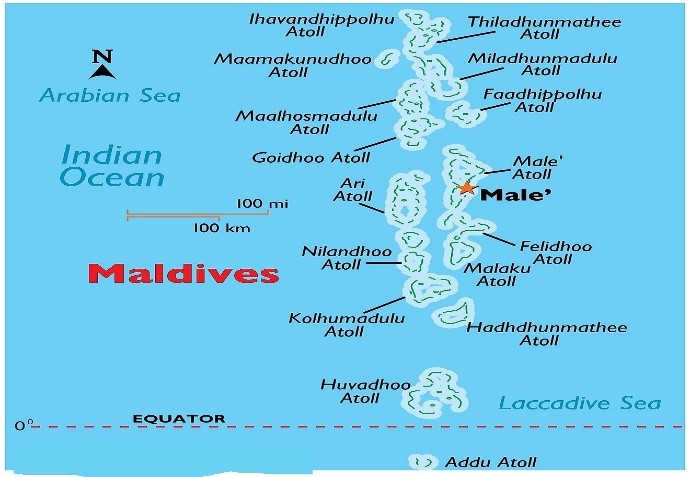
- 18 Oct 2025
In News:
In a landmark development in global public health, the Maldives has become the first country in the world to be validated by the World Health Organization (WHO) for eliminating mother-to-child transmission of HIV, syphilis, and hepatitis-B. This achievement represents a major milestone in protecting newborns from lifelong infections and advancing maternal-child health security.
Significance of the Achievement
Mother-to-child transmission (MTCT) of HIV, syphilis, and hepatitis-B remains a pressing concern worldwide, particularly in developing regions. In the WHO South-East Asia Region alone, thousands of infants are still born with congenital infections annually. Against this backdrop, Maldives’ accomplishment sets a benchmark for public health governance and disease elimination.
Key Drivers Behind Maldives’ Success
The achievement results from a comprehensive, integrated and equity-based healthcare strategy, backed by political commitment and strong health investments.
1. Universal Maternal Care and Screening
- Over 95% of pregnant women in Maldives receive antenatal care.
- Nearly all are screened for HIV, syphilis, and hepatitis-B.
- Universal access extends to migrants and remote island populations.
2. Robust ImmunisationProgramme
- Above 95% hepatitis-B birth-dose coverage within 24 hours of birth.
- Full childhood immunisation coverage consistently maintained.
3. Demonstrated Zero Transmission
- No infant HIV or syphilis cases reported since 2022.
- National survey (2023) confirmed zero hepatitis-B among school-entry children.
4. Strong Public Health Infrastructure
- Universal health coverage system offering free antenatal and diagnostic services.
- Government spends over 10% of GDP on health, among the highest in the region.
- Effective partnerships across public, private, and civil society sectors, supported by WHO technical assistance.
Strategic Measures Adopted
- Integrated maternal-child health services
- Early testing and treatment protocols
- Strong laboratory systems and surveillance
- Community outreach and migrant health inclusion
- High-quality vaccination logistics
Future Roadmap
To sustain the elimination status and deepen maternal-newborn care outcomes, Maldives plans to:
- Expand digital public-health systems
- Strengthen laboratory and monitoring quality
- Enhance services for key and migrant populations
- Increase private-sector collaboration
WHO will continue supporting Maldives to maintain momentum toward broader maternal, child, and adolescent health goals.
Maldives at a Glance
- Location: North-central Indian Ocean; southwest of India and Sri Lanka
- Capital:Malé
- Population: ~5.6 lakh (2025)
- Geography: ~1,200 coral islands across 26 atolls; ~200 inhabited
- Feature: Lowest-lying nation globally (maximum elevation ~1.8m)
- Climate: Tropical; Southwest monsoon (May–Aug), Northeast monsoon (Dec–Mar)
Live Cases Dashboard of the Legal Information Management and Briefing System (LIMBS)

- 16 Oct 2025
In News:
The Union Minister of State (Independent Charge) for Law and Justice recently inaugurated the Live Cases Dashboard under the Legal Information Management and Briefing System (LIMBS) at Shastri Bhawan, New Delhi. This marks a key advancement in the government's efforts to enhance transparency, efficiency, and coordination in legal case management.
About the Live Cases Dashboard
- A digital interface providing real-time visualisation of court cases involving the Government of India.
- Displays upcoming hearings — particularly cases scheduled within the next seven days — across the Supreme Court, High Courts, and other judicial bodies.
- Enables proactive decision-making and inter-ministerial coordination, helping departments prepare timely responses.
About LIMBS
- Web-based application designed to monitor litigation where the Union of India is a party.
- Launched for central ministries, departments, CPSUs and autonomous bodies in 2016, with a major upgrade in January 2020.
- Operates under the Department of Legal Affairs, Ministry of Law & Justice.
- Allows 24x7 access to government officials, advocates, arbitrators, nodal officers, and ministry users to upload and track case information.
- Offers a dashboard-based system providing a snapshot of legal matters to each stakeholder institution.
Significance
- The Government of India remains one of the largest litigants.
- LIMBS and its Live Cases Dashboard aim to reduce litigation burden in line with the vision of “Minimum Litigation, Maximum Governance”.
- Enhances transparency, accountability, and judicial efficiency.
- Promotes data-driven governance, timely legal response, and improved public resource management.
Blue Flag Certification
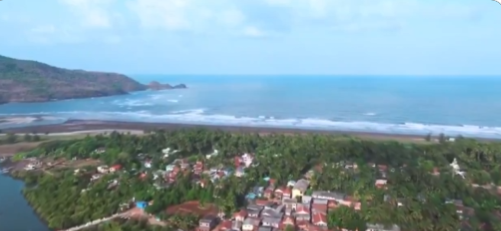
- 15 Oct 2025
In News:
- Five beaches in Maharashtra have recently been awarded the prestigious Blue Flag certification, a global eco-label that recognises high standards in environmental management, cleanliness, and sustainable tourism.
- The certified beaches include Shrivardhan and Nagaon (Raigad district), Parnaka (Palghar), and Guhagar and Ladghar (Ratnagiri district). The announcement was made by the state government, marking a significant achievement in coastal conservation and eco-tourism promotion.
About Blue Flag Certification
The Blue Flag is an internationally recognised eco-label awarded by the Foundation for Environment Education (FEE), Denmark. Established in France in 1985 and expanded globally in 2001, it is regarded as one of the world's most prestigious voluntary awards for beaches, marinas, and sustainable tourism boats.
Criteria and Objectives
To receive the Blue Flag, sites must meet 33 stringent criteria across key focus areas:
- Water quality
- Environmental management
- Environmental education and awareness
- Safety and essential services
The certification aims to promote sustainable development in coastal and freshwater ecosystems by ensuring high cleanliness standards, protecting natural habitats, and encouraging responsible tourism practices. Its mission centers on environmental education, conservation, and sustainable tourism development.
Blue Flag Beaches in India
With the addition of the five Maharashtra beaches, India continues to expand its presence on the global sustainable tourism map. Previously recognised Indian Blue Flag beaches include:
- Shivrajpur (Gujarat)
- Ghoghla (Diu)
- Kasarkod and Padubidri (Karnataka)
- Kappad (Kerala)
- Rushikonda (Andhra Pradesh)
- Golden Beach (Odisha)
- Radhanagar (Andaman & Nicobar)
- Kovalam (Tamil Nadu)
- Eden (Puducherry)
- Minicoy Thundi and Kadmat (Lakshadweep)
Significance
This recognition underscores India's ongoing efforts to align coastal tourism with global environmental standards, enhance beach amenities, and promote eco-friendly tourism models. It also strengthens India's initiative to improve coastal governance under programmes like the Integrated Coastal Zone Management Project and the government's broader sustainability mission.
NATO’s ‘Steadfast Noon’ Exercise
- 15 Oct 2025
In News:
NATO is set to conduct its annual nuclear deterrence drill, ‘Steadfast Noon’, with the 2025 edition hosted by the Netherlands. The exercise, a key component of NATO’s nuclear defence strategy, underscores the alliance’s commitment to maintaining credible deterrence capabilities amid evolving global security challenges.
About Steadfast Noon
Steadfast Noon is a long-standing annual nuclear readiness exercise conducted by the North Atlantic Treaty Organization (NATO). It serves as a crucial test of the alliance’s nuclear deterrence procedures, operational coordination, and preparedness to defend member states against strategic threats.
Key Features
- Host Country (2025): Netherlands
- Main Operating Base:Volkel Air Base, Netherlands
- Additional Bases:KleineBrogel (Belgium), Lakenheath (UK), Skrydstrup (Denmark)
- Participants: 14 NATO nations including the U.S., Germany, Poland, Finland, Belgium, the UK, the Netherlands, and Denmark
- Aircraft Involved: ~70–71 aircraft, including dual-capable fighter jets like the German Tornado and U.S./Dutch F-35s
- Nature of Exercise: Training for nuclear-mission capable aircraft — no live nuclear weapons are carried or flown
Dual-capable aircraft are equipped to deliver both conventional and nuclear payloads, making this exercise significant for testing operational flexibility and readiness.
Purpose and Strategic Context
The exercise is intended to:
- Validate operational procedures for NATO’s nuclear deterrent
- Strengthen coordination among allied air forces
- Signal commitment to collective defence under Article 5 of the NATO Treaty
- Deter adversaries by demonstrating credible nuclear readiness
Non-Participation of France
France does not take part in Steadfast Noon as it maintains an independent nuclear command and does not integrate its nuclear forces into NATO’s command-and-control system.
International Purple Fest 2025
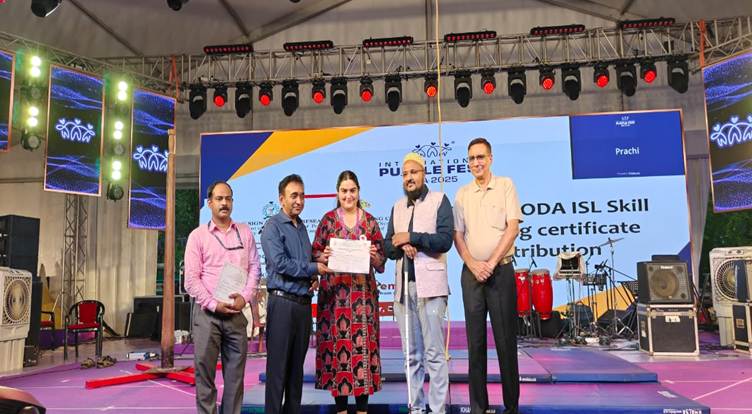
- 14 Oct 2025
In News:
- The International Purple Fest 2025, held in Goa reaffirmed India’s commitment to disability inclusion, accessibility, and empowerment.
- Organized by the Department for Empowerment of Persons with Disabilities (DEPwD) in partnership with the State Commissioner for Persons with Disabilities, Government of Goa, the Ministry of Social Justice & Empowerment, and United Nations India, the Fest promoted the vision of “Inclusion as a Movement.”
- The event positioned inclusive thinking and universal design as the foundation for education, skilling, and social participation of persons with disabilities (PwDs).
Key Initiatives Launched
1. IELTS Training Handbook for Persons with Disabilities
- Developed by Believe in the Invisible (BITI) with DEPwD support
- Authored by Anjali Vyas, British Council-certified trainer
- India’s first comprehensive accessible IELTS guide for candidates with visual, hearing, locomotor, and other disabilities
- Features:
- Step-by-step learning modules, skill-building tools, and lesson plans
- Accessible practice exercises, time-management support, grammar and vocabulary tips
- Integrated Indian Sign Language (ISL) video links
- Objective: Promote equitable access to global education and skill mobility
2. RPL Certification in ISL Interpretation
- Conducted by Indian Sign Language Research and Training Centre (ISLRTC) under the Skill Training Initiative of DEPwD
- Trained and evaluated SODA (Siblings of Deaf Adults) and CODA (Children of Deaf Adults) from across India
- First batch completed in August 2025, certificates to be awarded on 3 December 2025 (International Day of PwDs)
- Significance: Expands India’s certified ISL interpreter pool and formalizes community-based linguistic skills
3. Specialized Training in American & British Sign Languages
- One-month programme by ISLRTC commencing 3 December 2025
- Focus: Fundamentals of American Sign Language (ASL) and British Sign Language (BSL) — grammar, syntax, vocabulary
- Aim: Provide international exposure to Indian ISL professionals and enhance global employment opportunities
Significance
- Strengthens the National Education Policy’s inclusion mandate
- Builds skilled interpreters to meet growing demand in education, healthcare, public services, and courts
- Promotes disability-inclusive skilling aligned with the Rights of Persons with Disabilities Act, 2016
- Enhances India’s visibility in global disability rights discourse
Operation Golden Sweep
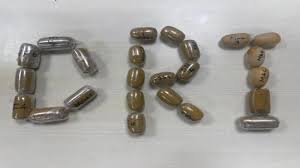
- 14 Oct 2025
In News:
The Directorate of Revenue Intelligence (DRI) has successfully dismantled a sophisticated international gold smuggling syndicate through “Operation Golden Sweep” at Mumbai’s Chhatrapati Shivaji Maharaj International Airport. The enforcement action, based on precise intelligence inputs, reflects India’s strengthened efforts to curb illicit financial flows and protect economic security.
Key Highlights
- Gold Seized: 10.488 kg of 24-carat gold
- Estimated Value: ?12.58 crore
- Arrests: 13 individuals — including foreign nationals (Bangladesh & Sri Lanka), airport staff, handlers, and the key mastermind
- Objective: Disrupt organised smuggling networks that erode foreign exchange reserves and threaten national security
Modus Operandi
The syndicate used an advanced and covert smuggling technique:
- Transit passengers flying from Dubai to Singapore, Bangkok, and Dhaka, routing via Mumbai, served as carriers
- Gold was concealed in egg-shaped wax capsules internally
- On arrival, gold was discreetly handed to complicit airport personnel within the international departure zone
- Airport insiders then smuggled the gold out and delivered it to handlers, who coordinated with the mastermind based in Mumbai and Dubai
This exposure underscores a rising insider threat in critical aviation infrastructure, where organised networks exploit privileged access.
Significance of the Operation
- Demonstrates DRI’s intelligence-driven enforcement, rapid execution, and inter-agency coordination
- Highlights evolving trade-based and route-based smuggling tactics
- Reinforces India's commitment to financial integrity, supply-chain security, and national economic interests
Supreme Court on Retrospective Application of the Surrogacy (Regulation) Act 2021
- 12 Oct 2025
In News:
In a landmark ruling, the Supreme Court of India held that the age restrictions prescribed under the Surrogacy (Regulation) Act, 2021 cannot be applied retrospectively to couples who had already initiated the surrogacy process or had frozen embryos prior to the law’s enforcement. The judgment marks a critical reaffirmation of reproductive autonomy, fairness, and the right to privacy under the Constitution.
Background
Several couples who had preserved embryos before the Surrogacy (Regulation) Act, 2021 came into force approached the Supreme Court after being denied permission to proceed with surrogacy due to the Act’s upper age limit clause.The Act, effective January 25, 2022, mandates that:
- The woman must be between 23 and 50 years, and
- The man must be between 26 and 55 years.
These couples contended that applying such limits retroactively violated their vested reproductive rights and their right to parenthood under Article 21 of the Constitution.
Supreme Court’s Judgment
A Bench comprising Justice B.V. Nagarathna and Justice K.V. Viswanathan ruled in favour of the petitioners, stating that the rights of intending parents crystallised at the time they froze embryos, when no statutory age bar existed. Therefore, the new restrictions cannot invalidate actions undertaken under the previous legal regime.
Key Observations
- Doctrine of Fairness:The Court held that retrospective laws that impair vested rights or impose new burdens violate the principle of fairness and legal certainty, forming part of India’s constitutional jurisprudence.
- Right to Privacy and Bodily Autonomy:Drawing from K.S. Puttaswamy v. Union of India (2017), the bench affirmed that reproductive decisions — including the choice to conceive through surrogacy — are protected under Article 21, which guarantees the right to life and personal liberty.
- Gender and Equality Lens:The Court noted that a restrictive interpretation disproportionately impacts women, who already face biological and societal limitations in reproduction, and cannot be penalised for delays beyond their control.
- Right to Parenthood:Justice Nagarathna emphasised that parenthood is a matter of personal autonomy and that the State cannot judge the parenting capabilities of couples merely based on age.
She observed:
“Before 2021, there were no binding laws on age restrictions for intending couples. Hence, their right to proceed with surrogacy remains valid.”
- Rebuttal to Government’s Argument:The Centre had argued that age limits were meant to protect the welfare of children born through surrogacy, assuming older parents might not meet long-term responsibilities.
The Court rejected this view, pointing out that no such limits exist for couples conceiving naturally, making the argument inconsistent.
About the Surrogacy (Regulation) Act, 2021
Objective: To regulate surrogacy procedures in India by allowing only altruistic surrogacy and prohibiting commercial surrogacy, with an emphasis on protecting surrogate mothers and children from exploitation.
Key Provisions
|
Category |
Provisions |
|
Intending Couple Eligibility |
Indian citizens, married for at least 5 years; Woman aged 23–50, Man aged 26–55; must prove medical infertility. |
|
Surrogate Mother Eligibility |
A married woman aged 25–35 years, with at least one biological child. |
|
Institutional Mechanism |
National and State Surrogacy Boards and Appropriate Authorities to regulate licensing, ethics, and compliance. |
|
Penalties |
Commercial surrogacy, or sale of gametes/embryos, punishable by up to 10 years imprisonment and fines up to ?10 lakh. |
Significance of the Judgment
- Upholds Constitutional Morality:Reaffirms that legislative intent must align with constitutional values of fairness, equality, and liberty.
- Protects Reproductive Autonomy:Strengthens the legal recognition of reproductive choices as an intrinsic part of individual dignity and privacy.
- Ensures Legal Certainty:Prevents retrospective penalisation of couples who acted in good faith under the pre-existing legal framework.
- Gender Justice and Inclusivity:Acknowledges women’s agency and safeguards them from arbitrary restrictions that could hinder their reproductive timelines.
- Balances Regulation and Rights:While the State’s intent to regulate surrogacy is legitimate, the ruling ensures such regulation does not override fundamental rights or vested personal decisions.
India’s National Red List Roadmap
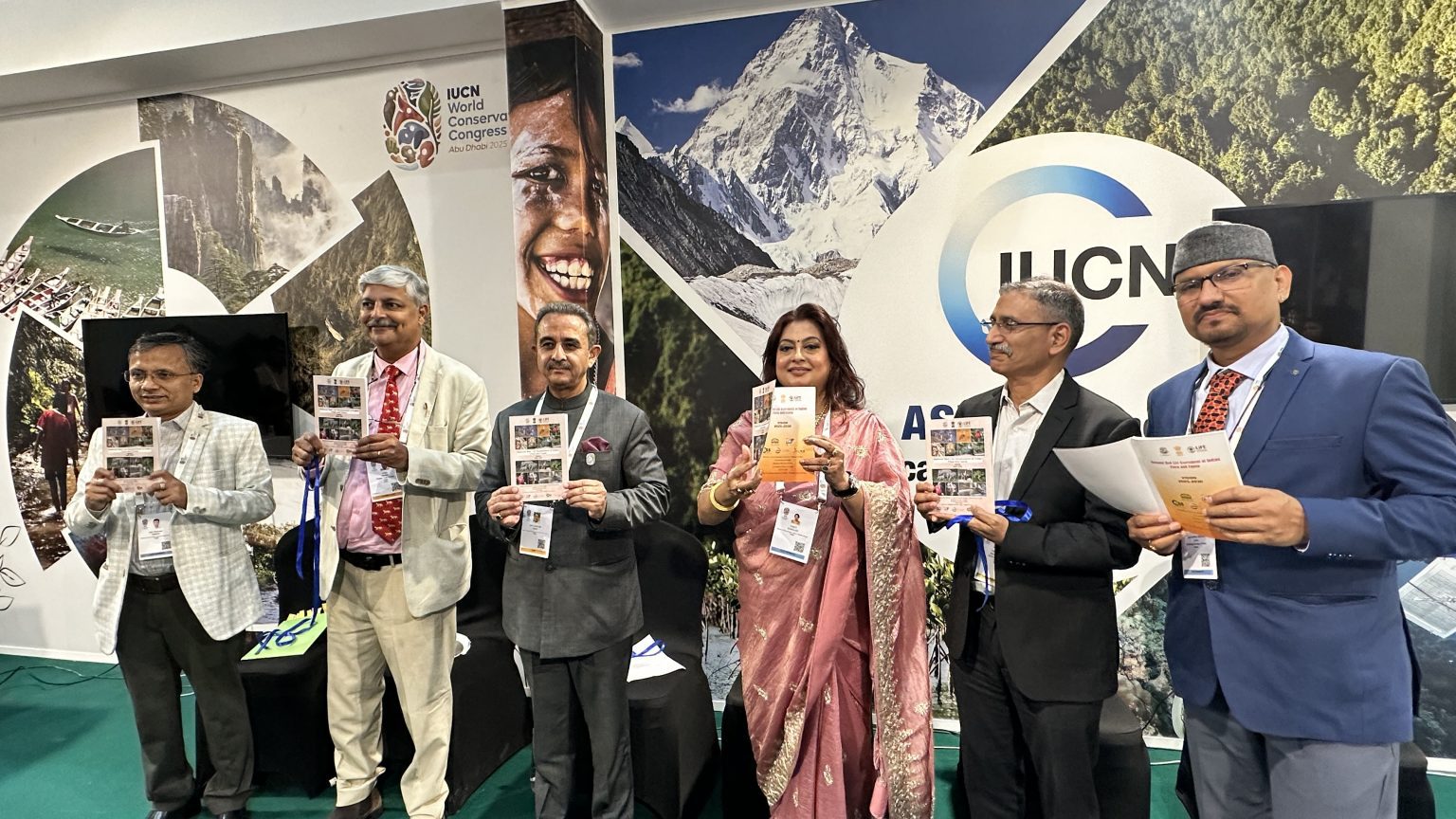
- 12 Oct 2025
In News:
At the IUCN World Conservation Congress 2025 in Abu Dhabi, India launched its National Red List Roadmap and Vision 2025–2030, marking a significant milestone in national biodiversity documentation and conservation policy. The initiativerepresents India’s commitment to establishing a comprehensive, science-based framework for assessing species and shaping long-term conservation priorities.
The National Red List Roadmap: Overview and Objectives
The National Red List Roadmap is India’s first integrated national initiative to identify, classify, and conserve threatened species across ecosystems — terrestrial, freshwater, and marine — in alignment with IUCN global standards.
It seeks to:
- Develop a nationally coordinated and inclusive red-listing system for flora and fauna.
- Generate baseline data and threat assessments to guide evidence-based policymaking.
- Strengthen India’s obligations under the Convention on Biological Diversity (CBD) and the Kunming–Montreal Global Biodiversity Framework (KMGBF).
- Foster collaboration among scientists, conservationists, and local communities to ensure equitable biodiversity protection.
The programme will culminate in the publication of India’s National Red Data Books for flora and fauna by 2030, creating an authoritative reference for conservation planning.
Institutional Collaboration
The roadmap is jointly prepared by:
- Zoological Survey of India (ZSI)
- Botanical Survey of India (BSI)
- IUCN-India, and
- Centre for Species Survival (CSS), India
This inter-agency collaboration ensures a unified system that combines scientific taxonomy, digital technology, and local knowledge systems to monitor and protect India’s biological diversity.
Vision 2025–2030: India’s Strategic Conservation Blueprint
The Vision 2025–2030 document provides a forward-looking framework to guide biodiversity governance over the next decade. It focuses on data-driven conservation, institutional synergy, and community participation, aligning with the UN Sustainable Development Goals (SDGs) and KMGBF targets.
Key Objectives:
- Establish a centralised biodiversity database for national-level coordination.
- Enhance species identification and taxonomy through expert collaboration.
- Integrate digital tools, GIS mapping, and field surveys for real-time species monitoring.
- Build a network connecting scientific institutions, local communities, and policymakers.
- Promote inclusive and equitable participation of indigenous and local communities in conservation processes.
By 2030, India aims to complete comprehensive species assessments, update threat categories, and integrate the results into national wildlife action plans and climate strategies.
India’s Biodiversity Profile
India is recognised as one of the 17 megadiverse countries in the world and hosts four of the 36 global biodiversity hotspots — the Himalayas, Western Ghats, Indo-Burma, and Sundaland.
Key Statistics:
- Covers 2.4% of global land area but supports nearly 8% of global flora and 7.5% of global fauna.
- Houses over 104,000 faunal species, 18,000 species of flowering plants, and around 20,000 marine species.
- Approximately 28% of plant species and 30% of animal species are endemic to India.
These figures underscore India’s ecological richness and the urgency for systematic monitoring and protection.
Legal and Policy Backing
- The initiative aligns with India’s robust legal framework for biodiversity conservation, anchored in the Wild Life (Protection) Act, 1972, which was amended in 2022 to extend protection to species listed under the CITES Appendices.
- The National Red List Roadmap will complement existing programmes like the National Biodiversity Mission, National Wildlife Action Plan, and Integrated Development of Wildlife Habitats, ensuring that conservation decisions are guided by scientific evidence and threat analysis.
Significance for Conservation Policy
- Evidence-Based Decision-Making: The roadmap institutionalises data-backed conservation planning.
- National Accountability: Regular species assessments will help monitor progress under national and global biodiversity targets.
- Scientific Collaboration: Encourages coordination among researchers, policymakers, and conservation agencies.
- Public Engagement: Integrates traditional ecological knowledge and community-driven documentation.
- Global Alignment: Reinforces India’s commitment to the Kunming–Montreal Global Biodiversity Framework and CBD Aichi Targets.
India–Afghanistan Relations Amid Taliban Diplomacy
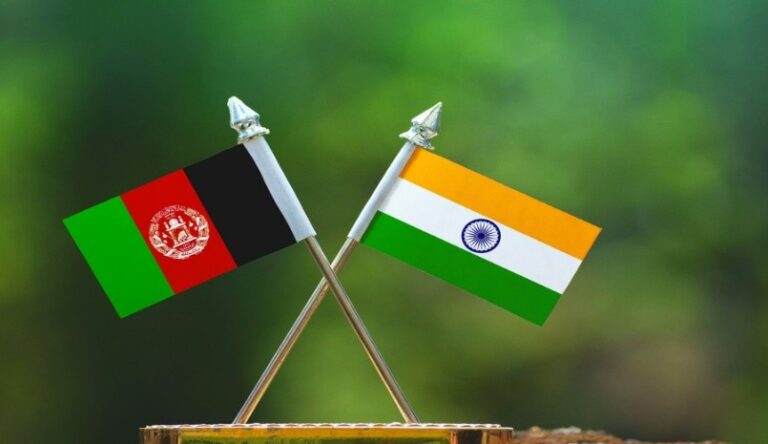
- 12 Oct 2025
In News:
Afghanistan’s Foreign Minister Amir Khan Muttaqi’s six-day visit to India marks the first high-level interaction between New Delhi and the Taliban government since 2021. The visit reflects India’s cautious yet pragmatic attempt to re-engage diplomatically with Kabul amid evolving regional dynamics.
Historical Foundations of India–Afghanistan Relations
The relationship between India and Afghanistan is rooted in civilisational, cultural, and strategic linkages that predate modern statehood.
- Civilisational Bonds: The ancient Kabul–Gandhara–Taxila corridor served as a conduit for trade and Buddhist exchanges, shaping a shared heritage.
- Political Affinity: After 1947, Afghanistan stood apart by opposing Pakistan’s admission to the UN, signalling early alignment with India.
- Developmental Partnership: Since 2001, India has invested over $3 billion in Afghanistan’s reconstruction, building major projects like the Salma Dam, Afghan Parliament, and the Zaranj–Delaram Highway, solidifying India’s goodwill.
- Humanitarian Outreach: Even after the Taliban takeover in 2021, India sustained “people-centric engagement” by supplying 50,000 tonnes of wheat, medicines, vaccines, and scholarships — reflecting its long-term commitment to the Afghan people.
India’s Strategic Calculus Behind Engagement
India’s current approach combines realism and restraint, shaped by five key strategic considerations:
a. Regional Stability and Connectivity
- Afghanistan remains crucial to India’s access to Central Asian energy markets.
- Projects like Chabahar Port and the International North–South Transport Corridor (INSTC) rely on Afghan stability for viability.
b. Countering Pakistan and China
- Taliban-led Afghanistan has seen strained ties with Pakistan while engaging with China’s BRI framework.
- India’s outreach seeks to dilute Pakistan’s strategic depth and limit China’s westward expansion through CPEC.
c. Counterterrorism and Security Cooperation
- Groups such as Lashkar-e-Taiba (LeT), Jaish-e-Mohammed (JeM), and Islamic State–Khorasan Province (ISKP) operate from Afghan soil.
- Diplomatic engagement allows for intelligence sharing, counterterror coordination, and crisis management.
d. Preventing Radicalisation Spillover
- Instability in Afghanistan could intensify cross-border militancy, narcotics trade, and extremist radicalisation, impacting India’s internal security.
e. Humanitarian and Soft-Power Diplomacy
- India’s assistance in education, health, and food security continues to build moral legitimacy and strengthen its image as a responsible regional power.
Policy Dilemmas and Diplomatic Constraints
Despite its engagement, India faces significant diplomatic challenges:
- Non-Recognition vs. Realpolitik: India has not formally recognised the Taliban regime but follows a de facto engagement policy to protect its strategic interests.
- Symbolic Diplomacy: Meetings in Dubai (2024) and New Delhi (2025) have carefully excluded Taliban flags and formal protocol to maintain a balance between engagement and legitimacy.
- Connectivity Challenges: The withdrawal of the Chabahar sanctions waiver constrains India’s access to Afghanistan and Central Asia.
- External Pressures: The US–Pakistan rapprochement, Russia–China engagement with Kabul, and Iran’s growing influence complicate India’s regional calculus.
- Human Rights Concerns: India must balance pragmatic engagement with its principled support for inclusive governance, women’s rights, and democratic values in Afghanistan.
Regional Implications of the Muttaqi Visit
|
Dimension |
Implications for India |
|
Strategic |
Strengthens dialogue on counterterrorism and connectivity; reduces Pakistan’s leverage. |
|
Economic |
Opens prospects for trade corridors via Chabahar and access to Afghanistan’s $1–3 trillion mineral reserves. |
|
Diplomatic |
Reinforces India’s position as a regional stabiliser engaging multiple stakeholders — Russia, Iran, and Central Asia. |
|
Security |
Enables real-time intelligence cooperation against extremist networks. |
|
Symbolic |
Projects India’s Strategic Autonomy Doctrine — engagement without endorsement. |
Way Forward
- Adopt a Dual-Track Policy: Continue humanitarian and developmental assistance while maintaining calibrated diplomatic engagement with the Taliban.
- Enhance Regional Coordination: Work through Moscow Format, SCO, and Heart of Asia platforms alongside Russia, Iran, and Central Asian partners.
- Revive Chabahar Connectivity: Explore limited sanctions relief through multilateral mechanisms to ensure sustained India–Afghanistan trade access.
- Institutionalise Counterterror Cooperation: Establish an India–Afghanistan Security Contact Group to share intelligence and monitor cross-border threats.
- Invest in Human Capital: Expand scholarships, online education, and women-focused programmes to strengthen long-term societal goodwill.
Conclusion
Amir Khan Muttaqi’s visit marks a diplomatic turning point — signalling India’s shift from cautious observation to strategic pragmatism in its Afghan policy. Balancing values with realism, New Delhi aims to secure its geopolitical and economic interests while upholding humanitarian principles.
India’s nuanced engagement — without formal recognition — positions it as a potential stabilising anchor in South–Central Asia, where constructive diplomacy rather than confrontation remains the key to regional peace and security.
Port of Pasni
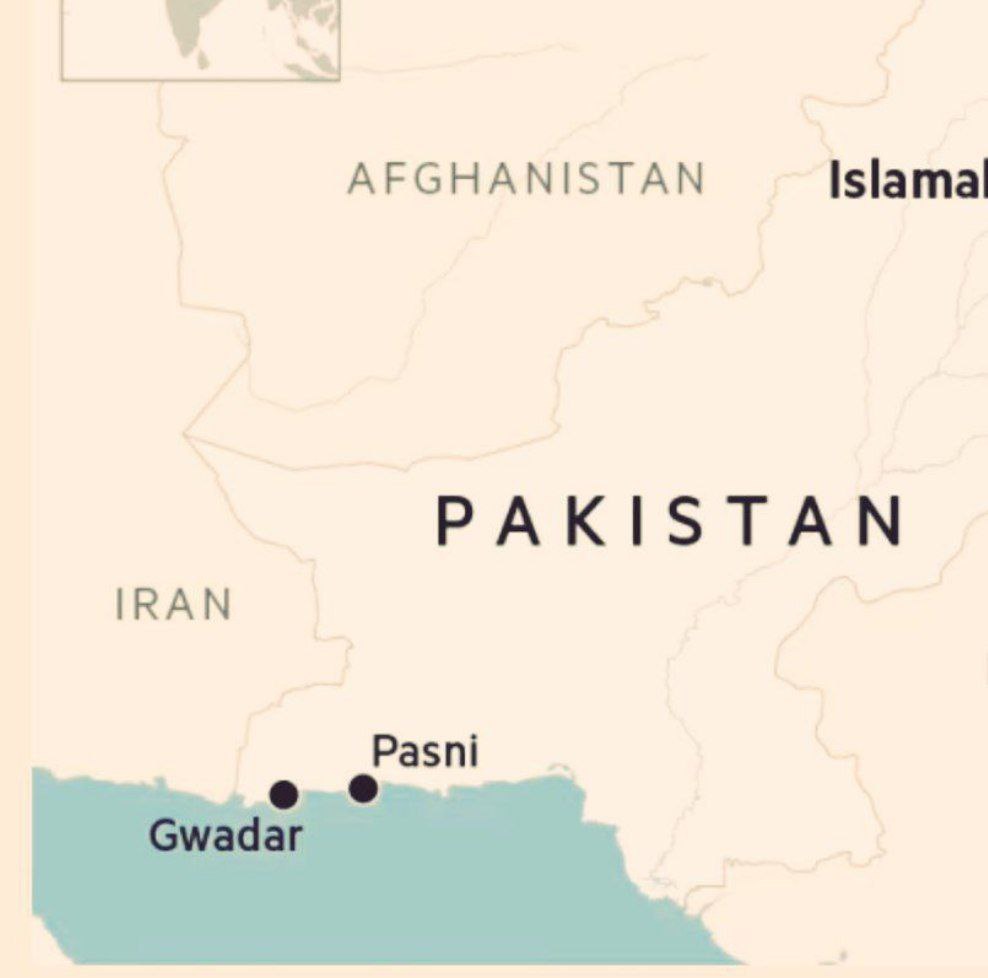
- 12 Oct 2025
In News:
Pakistan’s recent diplomatic engagements indicate a marked shift in its foreign policy priorities. The country, traditionally aligned with China under the China–Pakistan Economic Corridor (CPEC) framework, is now attempting to re-engage with the United States. Central to this emerging realignment is Islamabad’s reported proposal to allow the US to develop a new port at Pasni in Balochistan — a move that carries significant geopolitical and strategic ramifications.
The Pasni Port Proposal: Redefining Strategic Partnerships
Pakistan has reportedly offered the United States the opportunity to build and operate a port at Pasni, a deep-water harbour located on the Arabian Sea in Balochistan’s Gwadar district.
- The proposed port is around 70 miles east of China-operated Gwadar Port and approximately 100 miles from Iran’s border.
- The initiative aims to reduce Pakistan’s dependence on China’s Belt and Road Initiative (BRI), attract American investment, and open access to critical mineral exports from Balochistan.
- Plans for a railway linkage between Pasni and the hinterland have also been discussed to enhance trade connectivity.
If realised, this project would grant Washington a strategic maritime foothold in the region — an area of growing competition among global powers.
The Emerging Maritime Triangle: Pasni–Gwadar–Chabahar
Pasni’s location gives rise to a new maritime triangle involving:
- Gwadar Port – a China–Pakistan venture central to the CPEC framework;
- Chabahar Port – a joint India–Iran initiative providing access to Afghanistan and Central Asia; and
- Pasni Port – potentially linked to US–Pakistan cooperation.
This triad places China, the US, and India in close operational proximity, turning the northern Arabian Sea into a strategic hotspot where economic corridors overlap with geopolitical rivalries.
Economic Drivers: The Mineral Dimension
Balochistan is rich in rare earth elements and critical minerals, crucial for high-tech manufacturing and green technologies.
- During recent engagements in Washington, Pakistan’s leadership reportedly showcased samples of these minerals to US officials in an attempt to secure American investment.
- The proposal reflects a shift in Pakistan’s economic diplomacy — reoffering projects once promised to China now to the United States.
This “resource diplomacy” underlines Islamabad’s efforts to diversify partnerships amid economic distress and debt dependence on China.
Domestic Political Motivations
The overtures toward Washington also have domestic political undertones.
- The civil–military establishment, led by Prime Minister Shehbaz Sharif and Army Chief General Asim Munir, faces questions of legitimacy and stability at home.
- Closer ties with the US are seen as a way to gain international backing and financial relief.
- However, the leadership’s willingness to reconsider Pakistan’s stance on issues like recognition of Israel under the Abraham Accords has invited domestic criticism for allegedly compromising national principles and Palestinian solidarity without parliamentary approval.
Regional Reactions and Strategic Fallout
China’s Concerns
- Beijing views the Pasni initiative as undermining CPEC and encroaching upon its sphere of influence.
- A potential US presence near Gwadar and close to Xinjiang’s western frontier could be perceived as a strategic encirclement.
Iran’s Apprehensions
- Pasni’s proximity to the Iranian border raises concerns in Tehran, which already faces tensions with the US.
- The project could alter the regional balance and complicate Iran’s trade interests via Chabahar.
India’s Calculations
- India’s Chabahar Port project could lose strategic relevance if the Pasni initiative attracts significant US investment and attention.
- The US’s ambiguous stance on the Chabahar sanctions waiver further limits India’s operational space in the region.
Afghanistan’s Position
- The Taliban government may cautiously welcome US economic engagement but will resist any renewed American military presence, such as at Bagram Airbase.
Security Implications: Risk of Regional Instability
Balochistan already faces persistent challenges, including:
- Baloch insurgency,
- Militant violence in Khyber Pakhtunkhwa, and
- Ethnic and sectarian tensions.
Introducing American infrastructure and personnel into this volatile setting could exacerbate local grievances and trigger a new phase of proxy competition between the US and China.
Such dynamics risk turning Balochistan into a geostrategic flashpoint and further destabilising Pakistan’s internal security landscape
India–Qatar Relations
- 11 Oct 2025
In News:
- The Union Minister of Commerce and Industry, Piyush Goyal, recently visited Doha, Qatar, to co-chair the India–Qatar Joint Commission on Economic and Commercial Cooperation with H.E. Sheikh Faisal bin Thani bin Faisal Al Thani, Qatar’s Minister of Commerce and Industry.
- The visit marked a significant step toward strengthening bilateral economic engagement, deepening energy cooperation, and advancing a future-ready partnership between the two nations.
India–Qatar Joint Commission Meeting: Key Outcomes
- Ambitious Trade Target:Both sides recognised the untapped potential in their economic relationship and set an ambitious goal to double bilateral trade by 2030. Currently, trade between the two nations stands at around USD 14 billion.
- India–Qatar Comprehensive Economic Partnership Agreement (CEPA):The countries reaffirmed their commitment to pursue an ambitious CEPA, a free-trade pact aimed at deepening market access, investment flows, and trade facilitation.
- Digital Integration:A major milestone was the launch of India’s Unified Payments Interface (UPI) in Qatar, enabling seamless digital payments for both the Indian diaspora and Qatari consumers—symbolising the growing digital and fintech cooperation between the two nations.
- Sectoral Cooperation:
The ministers identified multiple sectors for expansion of trade and investment:- Traditional sectors: Pharmaceuticals, textiles, gems &jewellery.
- Manufacturing & technology: Electronics, automobiles, processed foods.
- Future-focused areas: IT, high-tech industries, and renewable energy (especially solar).
- Energy Partnership:India appreciated Qatar’s long-term LNG supply agreement of 7.5 million tonnes per year from 2028, underscoring the centrality of energy security in the bilateral relationship.
Bilateral Trade and Economic Ties
- Trade Profile (FY 2024–25):Bilateral trade stood at USD 14.15 billion, with India facing a trade deficit of about USD 10.78 billion, primarily due to hydrocarbon imports.
- Qatar’s exports to India comprise petroleum and LNG (89% of total trade), while India exports food products, textiles, machinery, and chemicals.
- Investment Linkages:Over 20,000 Indian companies (wholly owned and joint ventures) operate in Qatar, while Qatar’s FDI in India is valued at around USD 1.5 billion, spread across sectors like energy, infrastructure, and technology.
- The Qatar Investment Authority (QIA) has also invested heavily in India’s National Infrastructure Pipeline (NIP), technology start-ups, and real estate.
- Digital and Fintech Cooperation:The introduction of UPI in Qatar represents India’s expanding digital public infrastructure diplomacy, strengthening financial inclusion for over 800,000 Indian residents in Qatar.
Strategic Cooperation Beyond Trade
Energy Security
- Qatar as a Key Supplier:Qatar is India’s largest LNG and LPG supplier, accounting for 26% of India’s LPG imports and over three-fourths of total bilateral trade through hydrocarbons.
- Stability and Clean Transition:Long-term LNG contracts ensure price stability and support India’s clean energy transition under its net-zero goals.
Defence and Security
- The India–Qatar Defence Cooperation Agreement (2008, renewed in 2018) provides a framework for training, naval visits, and joint maritime exercises such as Za’ir-Al-Bahr (Roar of the Sea).
- Regular participation in events like DIMDEX (Doha International Maritime Defence Exhibition) reflects deepening maritime security ties in the Indian Ocean Region.
Cultural and People-to-People Ties
- The 2012 Cultural Cooperation Agreement and the 2019 India–Qatar Year of Culture have promoted cultural exchange through festivals like ‘Passage to India’ (2024).
- The Indian diaspora in Qatar, numbering over 830,000, forms a vital bridge between the two nations, contributing to Qatar’s development and remitting billions annually to India.
Mutual Significance
For India
- Energy Security: Ensures steady LNG supplies and shields India from global price volatility.
- Strategic Investments: QIA’s long-term investments aid infrastructure and industrial growth.
- Diaspora Strength: Provides remittances and strengthens cultural linkages.
- Strategic Depth in West Asia: Qatar’s regional diplomacy and ties with global powers enhance India’s strategic outreach in the Gulf.
For Qatar
- Stable Energy Market: India provides a reliable and growing market for LNG exports, critical for Qatar’s fiscal stability.
- Economic Diversification: India offers investment opportunities beyond hydrocarbons, particularly in fintech, renewables, healthcare, and education.
- Food and Supply Chain Security: India’s exports ensure Qatar’s access to essential commodities and pharmaceuticals.
- Knowledge Partnership: India’s IT, education, and skill development sectors support Qatar’s shift toward a knowledge-based economy under Qatar National Vision 2030.
Broader Vision: Strategic Partnership and Future Outlook
- The visit underscored the elevation of India–Qatar ties to a Strategic Partnership, aligning with India’s vision of becoming a Viksit Bharat by 2047.
Minister Goyal emphasised India’s macroeconomic resilience, robust startup ecosystem, and inclusive growth model, encouraging greater Qatari investments and joint ventures in India’s high-growth sectors. - Both nations agreed to strengthen institutional dialogues, deepen cooperative federalism, and promote business-to-business engagements through platforms such as the India–Qatar Joint Business Council (JBC).
UNESCO’s New Director-General
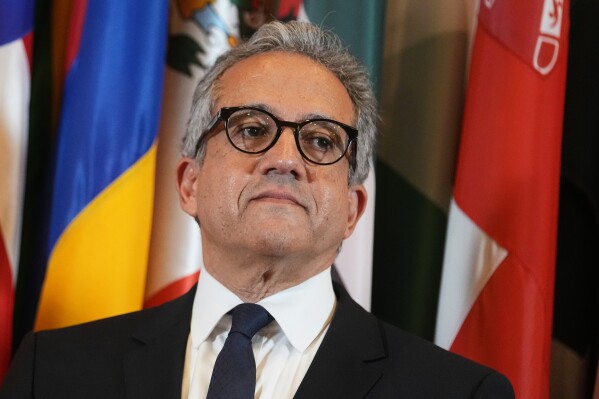
- 10 Oct 2025
In News:
The Executive Board of UNESCO (United Nations Educational, Scientific and Cultural Organization) has elected Egypt’s Khaled El-Enany as its new Director-General for a four-year term (2025–2029), succeeding Audrey Azoulay of France. His election marks a significant moment for African and Arab representation within the United Nations system.
About the Election Process
- Nomination: Candidates are nominated by member states and evaluated by UNESCO’s 58-member Executive Board.
- Voting: The Board conducts a secret ballot, requiring an absolute majority to select a nominee.
- Approval: The selected candidate’s name is then forwarded to the General Conference—comprising 194 member states—for formal confirmation.
About the Director-General’s Role
The Director-General serves as the chief executive officer and spokesperson of UNESCO, responsible for implementing the policies and decisions of the General Conference and Executive Board.
Key Functions
- Leadership & Administration:
- Oversees UNESCO’s global programmes across education, culture, science, and communication.
- Manages the World Heritage Sites framework and educational cooperation initiatives.
- Policy Implementation:Translates strategic resolutions of the General Conference into operational programmes.
- Global Representation:Acts as the face of UNESCO in international diplomacy, fostering partnerships for cultural and educational cooperation.
- Financial Stewardship:Mobilizes funding, particularly important after the U.S. withdrawal, which caused an 8% cut in UNESCO’s annual budget.
About UNESCO
- Founded: 1945
- Headquarters: Paris, France
- Membership: 194 member states
- Mandate: To promote peace, education, science, and cultural understanding through international collaboration.
UNESCO’s global initiatives include:
- The World Heritage Convention (1972)
- The Education for Sustainable Development (ESD) framework
- The Man and the Biosphere (MAB)Programme
- Promotion of freedom of expression and media pluralism
International Stabilization Force for Gaza (ISF)
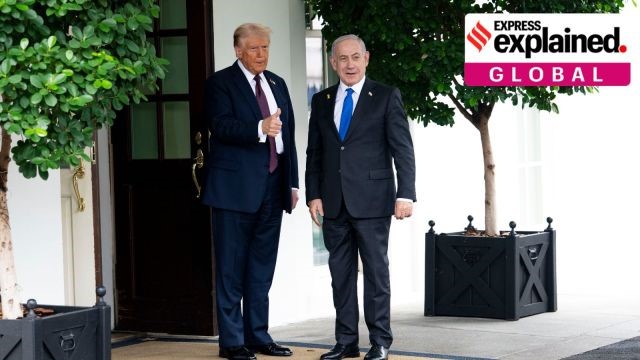
- 10 Oct 2025
In News:
In September 2025, U.S. President Donald Trump unveiled a 20-point “Comprehensive Plan to End the Gaza Conflict”, proposing an International Stabilization Force (ISF) to manage post-war Gaza. While both Israel and Hamas accepted the ceasefire and hostage-release obligations, deep divergences persist over Gaza’s future governance, Hamas’s fate, and the legitimacy of the ISF.
What Is the ISF?
The International Stabilization Force for Gaza is a proposed multinational security mission aimed at maintaining internal stability, enabling phased Israeli withdrawal, and overseeing Gaza’s demilitarization.
- Nature: A temporary but long-term security component of a technocratic, apolitical Palestinian Transitional Committee, which will govern Gaza during the interim period.
- Oversight: The ISF will operate under a “Board of Peace” chaired by the U.S. President, rather than the United Nations (UN).
- Composition: To be formed with “Arab and international partners,” but without a UN Security Council (UNSC) mandate—limiting its neutrality and legal legitimacy.
Objectives and Core Functions
- Demilitarization of Gaza:
- Confiscate and destroy Hamas weaponry.
- Prevent smuggling and block the inflow of arms.
- Security and Law Enforcement:
- Maintain order in “terror-free zones” vacated by the Israeli Defense Forces (IDF).
- Set milestones and timelines linked to Israel’s phased withdrawal.
- Capacity Building:Train and professionalize Palestinian law enforcement under international supervision.
- Governance Transition:Facilitate the formation of a reformed Palestinian security apparatus aligned with the transitional governance framework.
- Monitoring and Compliance:Track progress on demilitarization and withdrawal to prevent relapse into conflict.
Absence of a UN Mandate and Legitimacy Concerns
Unlike traditional UN peacekeeping or stabilization missions, which derive legitimacy from UNSC authorization under Chapter VII of the UN Charter, the ISF is designed to operate outside the UN framework.
- The UN’s role in Trump’s plan is restricted to aid distribution, not peacekeeping.
- Arab states have historically resisted deploying troops in Palestine under non-UN command, citing concerns about political bias and lack of legal accountability.
- Consequently, the ISF’s perceived alignment with American and Israeli objectives could undermine its credibility among Palestinians and regional actors.
Precedents and Lessons from Past Stabilization Missions
Previous stabilization forces outside or alongside the UN framework reveal the complexity and risks of such interventions:
- Afghanistan (ISAF, 2001–2021): Initially authorized by the UN and later led by NATO, the mission expanded into combat operations against the Taliban but failed to establish durable peace.
- Lebanon (MNF, 1982–1983): A U.S.-led multinational force, created outside the UN, withdrew after facing intense violence from militias, highlighting the dangers of intervention without broad legitimacy or consent.
These experiences underscore that stabilization without political resolution often leads to mission failure and regional backlash.
Challenges in the Palestinian Context
- Lack of Political Resolution:
- The two-state solution remains unrealized; Israeli occupation continues in parts of Gaza and the West Bank.
- Without a clear political settlement, any international force risks being drawn into hostilities.
- Israeli and Hamas Positions:
- Israel has refused a full withdrawal from Gaza, citing security concerns.
- Hamas has not agreed to complete disarmament or exclusion from the Palestinian political framework.
- These contradictory stances create operational uncertainty for the ISF.
- Arab States’ Reservations:
- Arab governments have called for aUN-mandated protection force, not a U.S.-led stabilization mission.
- An eight-nation Arab-Islamic statement (Sept 30, 2025) demanded Israel’s complete withdrawal, diverging sharply from Washington’s version of the plan.
- Risk of Renewed Armed Resistance:Partial Israeli withdrawal and continued occupation zones could fuel militant activity, increasing the risk of direct confrontation with the ISF.
- Limited Accountability:Absence of UN oversight and clear reporting mechanisms raises concerns over the ISF’s command structure, rules of engagement, and human rights compliance.
Geopolitical and Strategic Implications
- For the U.S.: The ISF signifies Washington’s intent to maintain strategic control over Gaza’s post-conflict order, reducing UN influence.
- For Israel: The arrangement allows for partial demilitarization without ceding full security control—aligning with its domestic political compulsions.
- For Arab States: It poses a dilemma between supporting stability and avoiding association with a potentially occupation-legitimizing force.
- For Palestine: The lack of a fully sovereign and representative governance framework risks perpetuating disenfranchisement and renewed cycles of violence.
WHO Global Report on Trends in Tobacco Use (2000–2024) and Projections (2025–2030)
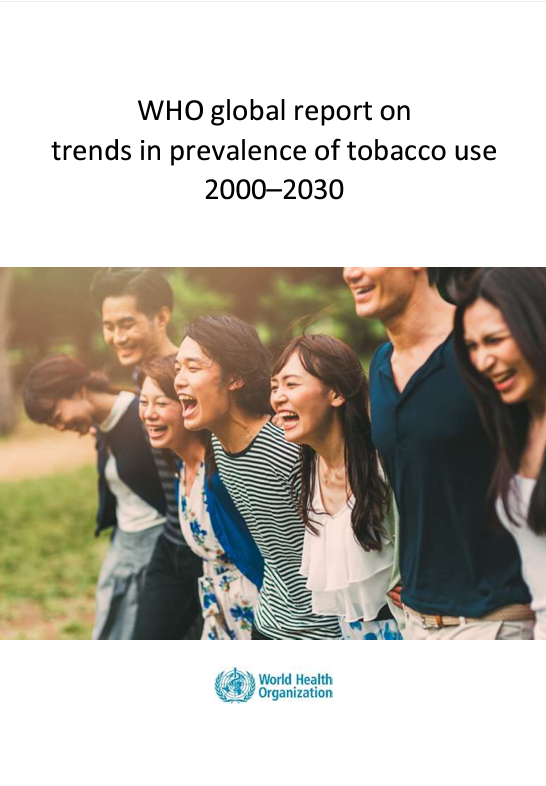
- 09 Oct 2025
In News:
The World Health Organization (WHO) released its latest report on global tobacco use, covering trends from 2000 to 2024 and projecting patterns through 2030. The report provides insights into the prevalence of tobacco consumption among individuals aged 15 years and above and assesses progress toward global reduction targets.
Global Tobacco Trends
- Declining Prevalence: Adult tobacco use worldwide decreased from 26.2% in 2010 to 19.5% in 2024.
- Continued Burden: Despite progress, approximately 1 in 5 adults still consumes tobacco.
- Rise of E-Cigarettes: Over 100 million people use e-cigarettes globally, introducing new regulatory and public health challenges.
India’s Tobacco Landscape
- Users (2024): Around 243.48 million Indians aged 15 and above consume tobacco.
- Global Ranking: India is the 2nd largest producer (after China) and 2nd largest exporter (after Brazil) of tobacco.
- Progress: India is projected to achieve a 43% reduction in prevalence between 2010–2025, surpassing the WHO’s NCD target of 30% reduction.
Measures to Control Tobacco Use in India
- Cigarettes and Other Tobacco Products Act (COTPA), 2003:
- Prohibits smoking in public areas.
- Bans tobacco advertising.
- Restricts sales to minors.
- Mandates packaging and labeling standards.
- Prohibition of Electronic Cigarettes Act, 2019:Outlaws theproduction, import, sale, and promotion of e-cigarettes and similar devices.
- National Tobacco Control Programme (NTCP, 2007–08):
- Promotes awareness of health risks associated with tobacco.
- Aligns with the WHO Framework Convention on Tobacco Control (FCTC).
- Tobacco-Free Film Rules, 2024:Enforces restrictions on tobacco depiction in films and television content.
- Yellow Line Campaign:Marks 100-yard boundaries around schools to enforce tobacco sales bans.
- Taxation and Pricing:Incremental hikes in excise and GST duties on tobacco products, though experts suggest further increases to maximize impact.
About Tobacco (Nicotiana tabacum)
- Botanical Profile: An annual herbaceous plant, native to tropical/subtropical South America, widely cultivated globally.
- Cultivation Requirements:
- Frost-free period of 90–120 days.
- Optimal temperature: 20–30°C.
- Rainfall: Minimum 500 mm; thrives in well-drained sandy loam or alluvial soils.
- Nicotine Content: All parts (except seeds) contain nicotine (2–8%), predominantly concentrated in the leaves (~64% of total plant nicotine).
Significance
The WHO report highlights that while tobacco use is declining globally, substantial public health efforts are still needed, particularly in regulating emerging products like e-cigarettes. India’s multi-pronged approach—legal frameworks, awareness campaigns, taxation, and innovative interventions—demonstrates a strong commitment to achieving tobacco-free goals by 2025.
India–Russia at 25
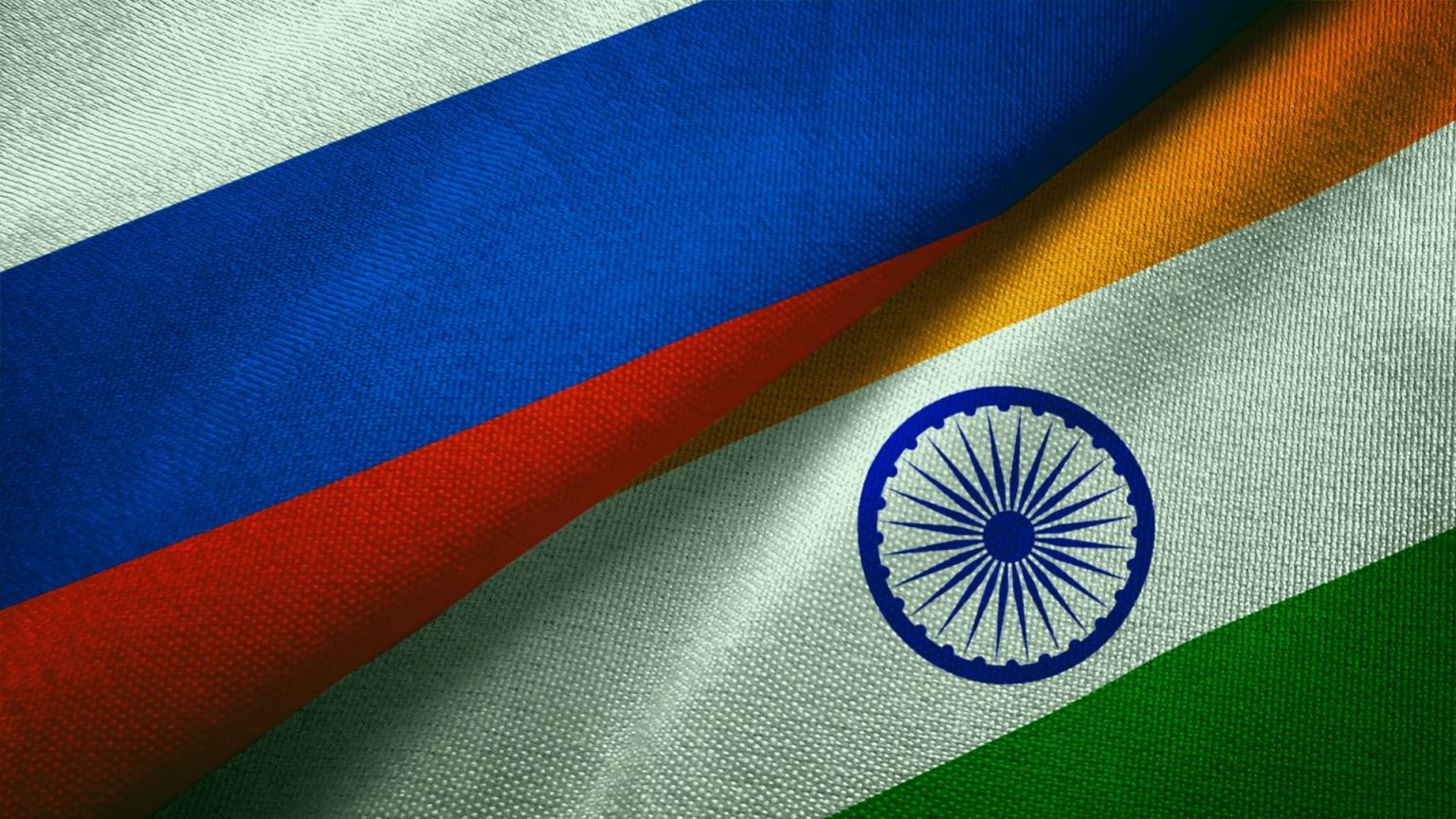
- 06 Oct 2025
In News:
- India and Russia marked 25 years of their Strategic Partnership in 2025, reaffirming their time-tested friendship and multifaceted cooperation amid a shifting global order.
- The partnership, first formalised in October 2000 through a declaration signed by President Vladimir Putin and Prime Minister Atal Bihari Vajpayee, was upgraded in 2010 to a “Special and Privileged Strategic Partnership.” This milestone underscores the enduring relevance of bilateral ties grounded in mutual trust, strategic autonomy, and converging global outlooks.
Evolution of the Partnership
- Over the last quarter-century, the India–Russia relationship has transitioned from a Cold War–era friendship to a broad-based strategic partnership encompassing defence, nuclear energy, science and technology, hydrocarbons, and space cooperation.
- Institutional mechanisms like the Intergovernmental Commission (IRIGC) and the 2+2 Dialogue framework have ensured sustained policy coordination across political, economic, and defence domains.
- At the 22nd Annual Summit held in Moscow in July 2024, both nations adopted joint statements on partnership and economic cooperation till 2030, alongside signing nine MoUs across critical sectors. Prime Minister Narendra Modi was also conferred Russia’s highest civilian honour, the Order of Saint Andrew, in recognition of his contribution to strengthening bilateral relations.
Multilateral and Global Engagement
- India and Russia continue to coordinate closely in multilateral platforms such as the United Nations (UN), G20, BRICS, and Shanghai Cooperation Organisation (SCO).
- During India’s G20 and SCO presidencies in 2023, the two nations held multiple high-level engagements, reaffirming commitment to a multipolar, rules-based international order.
- Russia has consistently supported India’s bid for a permanent seat in the UN Security Council, underscoring its trust in India’s global leadership role.
- Russia’s BRICS chairmanship in 2024 further strengthened this cooperation, with India actively participating in the Leaders’ Summit in Kazan, reflecting mutual alignment on global economic and security issues.
Economic and Trade Relations
- Economic engagement has become the new anchor of India–Russia relations. Bilateral trade reached a record USD 65.7 billion in FY 2023–24, driven by India’s rising imports of crude oil, fertilizers, and minerals, and exports of pharmaceuticals, machinery, and engineering goods.
- Both nations aim to elevate bilateral trade to USD 100 billion by 2030 and mutual investments to USD 50 billion by 2025.
- Negotiations for a Free Trade Agreement (FTA) between India and the Eurasian Economic Union (EAEU) are underway, expected to further liberalise trade flows and enhance connectivity through initiatives like the International North–South Transport Corridor (INSTC) and Arctic route cooperation.
- Emerging areas such as shipbuilding, railways, aircraft construction, and small modular nuclear reactors reflect the partnership’s adaptation to new technological and developmental priorities.
Defence and Security Cooperation
Defence remains the cornerstone of the India–Russia partnership. The collaboration has evolved from a buyer–seller relationship to joint production and technology co-development.
Key projects include:
- S-400 Triumf missile systems
- Su-30MKI and MiG-29 fighter jets
- T-90 tanks and AK-203 rifles
- INS Vikramaditya aircraft carrier
- BrahMos missile joint venture, a symbol of high-end defence collaboration
Joint military exercises such as INDRA and Vostok enhance interoperability and strategic trust. The cooperation under IRIGC–Military and Military Technical Cooperation (M&MTC) ensures continuous modernization of India’s armed forces with Russian collaboration.
Science, Technology, and Space Cooperation
- Science and technology have emerged as vital pillars of bilateral engagement. A 2021 roadmap guides collaboration in nanotechnology, quantum computing, artificial intelligence, and space exploration.
- The Kudankulam Nuclear Power Plant remains a flagship project, with plans for future units under discussion.
- New initiatives are fostering innovation and youth cooperation through institutions like the Sirius Educational Foundation and Atal Innovation Mission, encouraging joint research and startup linkages.
- Both sides are exploring joint lunar and spaceflight missions, expanding beyond traditional sectors to future-ready technologies.
People-to-People and Educational Exchanges
Beyond strategic sectors, cultural, educational, and academic exchanges have deepened mutual understanding. Student exchanges, scholarships, and Russian language learning in Indian institutions have strengthened grassroots connections. Tourism and labour mobility are emerging as new frontiers of bilateral engagement.
Outlook and Way Forward
Marking 25 years of partnership, India and Russia are renewing their cooperation to align with the demands of a multipolar and technology-driven world. The relationship is now expanding into innovation-led, climate-conscious, and connectivity-focused domains, while retaining its traditional strengths in defence and energy.
The upcoming 2025 bilateral summit in New Delhi—coinciding with the 15th anniversary of the “Special and Privileged” status—is expected to chart a roadmap for the next phase, prioritising:
- Concluding the India–EAEU Free Trade Agreement,
- Enhancing energy security and Arctic cooperation,
- Promoting defenceindigenisation, and
- Strengthening regional stability in Eurasia and the Indo-Pacific.
Wassenaar Arrangement
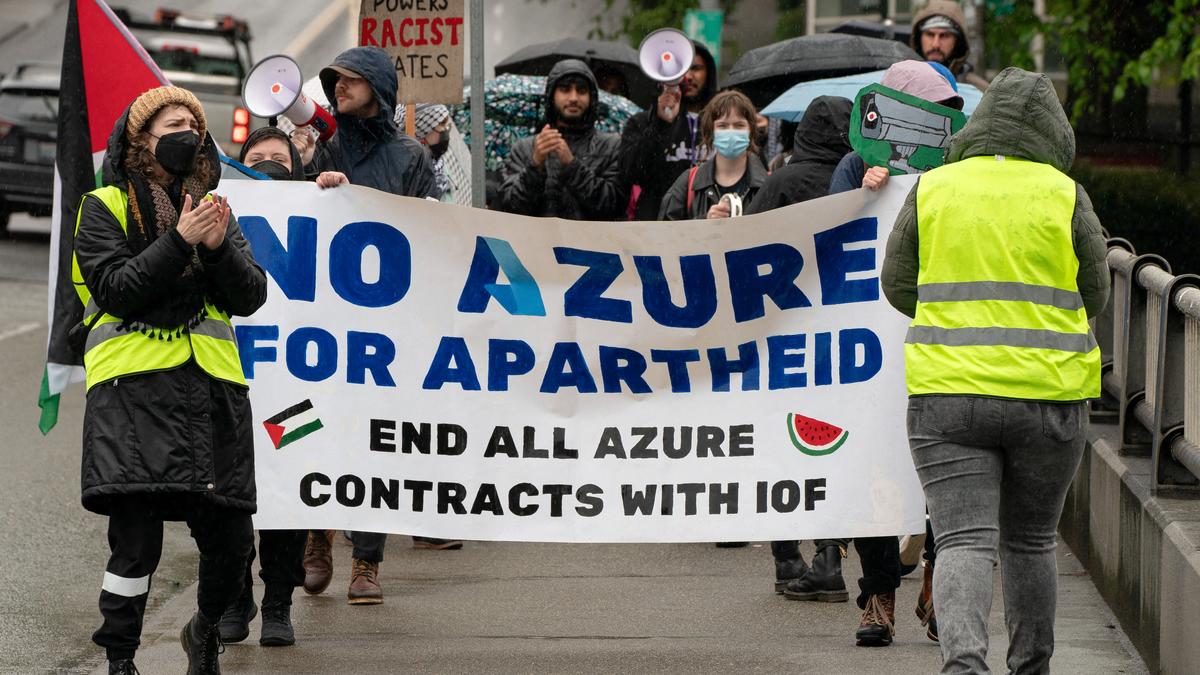
- 05 Oct 2025
In News:
- The Wassenaar Arrangement (WA), established in 1996, is a key multilateral export control regime that promotes transparency and responsibility in transfers of conventional arms and dual-use goods and technologies.
- It succeeded the Cold War-era Coordinating Committee for Multilateral Export Controls (COCOM). The name originates from Wassenaar, a suburb of The Hague (Netherlands), where the agreement was finalized in 1995.
Objectives and Structure
The primary goal of the WA is to prevent destabilizing accumulations of arms and sensitive technologies by ensuring that exports do not contribute to the development or enhancement of military capabilities that threaten international security. It seeks to achieve this through:
- Transparency and information exchange among member states on sensitive technology transfers.
- Control lists that detail conventional weapons, dual-use items, and technologies of military significance.
The Arrangement currently has 42 member countries, including major arms exporters. India became a member in 2017, enhancing its credentials as a responsible nuclear power and gaining access to advanced technologies. The Secretariat is located in Vienna, Austria.
Mechanism of Operation
- Member states voluntarily exchange information regarding exports and denials of items on the WA control lists. These include chemicals, materials, software, and production technologies that can have both civilian and military applications. Through this exchange, the Arrangement aims to ensure that exports do not reach entities or nations that could undermine global or regional security.
- India has aligned the WA’s control lists with its SCOMET (Special Chemicals, Organisms, Materials, Equipment, and Technologies) export framework, strengthening its export control system in line with international standards.
Emerging Challenges in the Digital Era
While the WA has evolved over time—such as by including controls on ‘intrusion software’—its framework largely focuses on physical exports like hardware, chips, and devices. However, modern technology increasingly operates through cloud-based services, data transfers, and software-as-a-service (SaaS) models, which do not always involve physical movement of goods.
This shift has created grey areas in export control enforcement. For example, when major tech infrastructure providers like Microsoft offer cloud computing or AI tools that could be misused for surveillance or repression, existing WA rules struggle to regulate such virtual exports. These challenges highlight the Arrangement’s limitations in addressing non-tangible, digital transfers of dual-use technologies.
The Need for Reform
To remain relevant, the Wassenaar Arrangement must modernize its control lists and definitions to address technologies such as:
- Cloud computing and virtualized infrastructure,
- Artificial intelligence and machine learning algorithms,
- Big data analytics and cybersecurity tools.
Strengthening coordination among member states to govern cross-border data flows and digital exports is crucial. The Arrangement should also explore mechanisms for real-time information sharing, capacity-building for developing members, and greater inclusivity in decision-making.
Interstellar Mapping and Acceleration Probe
- 04 Oct 2025
In News:
NASA has recently launched the Interstellar Mapping and Acceleration Probe (IMAP) to study how solar particles are energised and how the Sun’s protective bubble — the heliosphere — shields our solar system from harmful cosmic radiation. This mission represents a major step toward understanding the space environment critical for both scientific research and future human space exploration.
Understanding the Heliosphere
- The heliosphere is a vast bubble-like region created by the solar wind — a continuous stream of charged particles emitted by the Sun.
- It envelops the entire solar system and acts as a protective barrier against cosmic rays and interstellar particles. However, the structure, dynamics, and boundary of the heliosphere remain poorly understood.
- Understanding how solar particles are accelerated and how the heliosphere interacts with interstellar space is crucial, as variations in solar wind intensity influence space weather — which can damage satellites, affect communications, and pose health risks to astronauts.
About the IMAP Mission
- The IMAP spacecraft aims to map the boundary of the heliosphere, trace energetic particles, and enhance space weather forecasting.
- It is positioned at the first Earth–Sun Lagrange point (L1), about 1 million miles from Earth toward the Sun, enabling continuous observation of the solar wind in real time.
- IMAP will collect and transmit near real-time data to help scientists monitor solar wind disturbances and particle radiation hazards, improving preparedness for adverse space weather events.
- Its findings will also guide the planning of safer human missions beyond Earth, through improved spacecraft shielding and optimized flight paths.
Scientific Objectives
The IMAP mission will:
- Investigate how solar particles gain energy and how they are distributed throughout the heliosphere.
- Map the heliosphere’s outer boundary to understand its interaction with interstellar space.
- Enhance models of space weather, aiding the prediction of solar storms and radiation risks.
- Explore the fundamental physics governing plasma and particle behavior on both microscopic and galactic scales.
- Determine the composition of interstellar material and improve understanding of the cosmic building blocks of the universe.
Scientific Instruments
IMAP is equipped with 10 advanced instruments, each targeting specific phenomena in space.
Key instruments include:
- Energetic Neutral Atom Detectors — IMAP-Lo, IMAP-Hi, and IMAP-Ultra — which capture neutral atoms that were once charged ions and later gained electrons.
- Instruments to measure charged particles, magnetic fields, interstellar dust, and solar wind structures.
Together, these instruments will provide a comprehensive picture of particle behavior and energy flow within and beyond the heliosphere.
Significance
The IMAP mission bridges the gap between heliophysics, astrophysics, and planetary science. Its insights will:
- Advance our understanding of how the Sun’s magnetic and particle activity influences the solar system.
- Improve space weather forecasting, ensuring the safety of satellites, astronauts, and communication networks.
- Deepen scientific knowledge of how the heliosphere shields Earth and other planets from cosmic radiation.
- Support future human space missions, contributing to safer interplanetary travel.
By mapping our galactic neighborhood and decoding the physics of space particles, IMAP will transform our understanding of the Sun–Earth connection and the cosmic environment surrounding our solar system.
National Crime Records Bureau
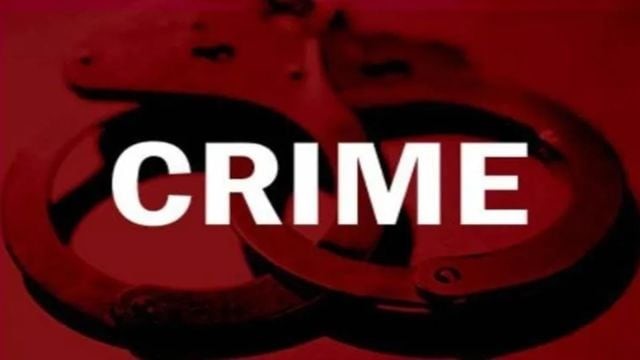
- 04 Oct 2025
In News:
The latest report from the National Crime Records Bureau (NCRB) highlights an alarming surge in crimes against Scheduled Tribes (STs) across India. As per the “Crime in India 2023” data, crimes against STs rose by 28.8%, from 10,064 cases in 2022 to 12,960 cases in 2023, reflecting deepening vulnerabilities of tribal communities in several parts of the country.
NCRB: Mandate and Role
Established in 1986, the NCRB functions under the Ministry of Home Affairs (MHA) as India’s central repository for crime and criminal data. Its creation followed recommendations from the Tandon Committee, the National Police Commission (1977–1981), and the MHA Task Force.
Headquartered in New Delhi, the Bureau is responsible for:
- Collection, analysis, and dissemination of crime data to aid law enforcement and policy formulation.
- Implementing and monitoring the Crime and Criminal Tracking Network and Systems (CCTNS) project, enabling interlinkage of police stations and online citizen services such as e-FIR and complaint filing.
- Maintaining the National Database of Sexual Offenders (NDSO) and managing the Online Cyber-Crime Reporting Portal, through which citizens can report offences like child pornography and cyber sexual violence.
- Hosting CyTrain, a digital training platform for cybercrime investigation and prosecution, and managing the Central Finger Print Bureau, India’s national fingerprint repository.
- Publishing annual statistical reports — Crime in India, Accidental Deaths & Suicides in India, and Prison Statistics India.
Key Findings: NCRB Crime Data 2023
The 2023 data reveals that Manipur witnessed the steepest spike in crimes against STs, registering 3,399 cases — a dramatic increase from just one case in 2022. The rise is closely linked to the ethnic violence between the Meitei and Kuki-Zo communities that erupted in May 2023.
Major offences reported in Manipur included 1,051 cases of arson, 260 cases of dacoity, 203 cases of humiliation or intimidation, and 193 cases of unlawful occupation or disposal of tribal land.
At the national level, the leading categories of offences against STs included:
- Simple hurt (21.3%) – 2,757 cases
- Riots (13.2%) – 1,707 cases
- Rape (9.2%) – 1,189 cases
State-wise, Madhya Pradesh (2,858 cases) and Rajasthan (2,453 cases) followed Manipur as the most affected states.
Crimes against Scheduled Castes (SCs) registered a marginal increase of 0.4% to 57,789 cases, while crimes against women rose 0.7% to 4,48,211 cases in 2023. The report highlighted that most offences against women were related to cruelty by husband or relatives (29.8%), kidnapping (19.8%), and assault to outrage modesty (18.7%).
Crimes against children surged by 9.2%, with 1,77,335 cases registered—predominantly under kidnapping (45%) and the POCSO Act (38.2%). Cases involving juveniles in conflict with law rose by 2.7%, totaling 31,365 cases.
|
Crime / Category |
2022 Count |
2023 Count |
% Change / Rate Info |
Notes |
|
Crimes against Scheduled Tribes (STs) — India total |
10,064 |
12,960 |
+28.8% |
Crime rate rose from 9.6 (2022) to 12.4 (2023) |
|
Manipur — Crimes against STs (state total) |
1 |
3,399 |
Huge increase |
2022 had 1 case; 2023 jumped to 3,399 |
|
Manipur — Dacoity (against STs) |
— |
260 |
— |
260 cases in 2023 |
|
Manipur — Arson (against STs) |
— |
1,051 |
— |
1,051 cases in 2023 |
|
Manipur — Intentional insult / intimidation (humiliation) |
— |
203 |
— |
203 cases in 2023 |
|
Manipur — Occupy / dispose of ST land |
— |
193 |
— |
193 cases in 2023 |
|
Crimes against Scheduled Castes (SCs) — India total |
57,582 |
57,789 |
+0.4% |
Slight increase year-on-year |
|
Crime against women — India total |
445,256 |
448,211 |
+0.7% |
Minor increase |
|
Crime against children — India total |
162,449 |
177,335 |
+9.2% |
Noticeable increase |
|
Juvenile cases (in conflict with law) |
30,555 |
31,365 |
+2.7% |
Cases involving juveniles |
Preponderance of Probability
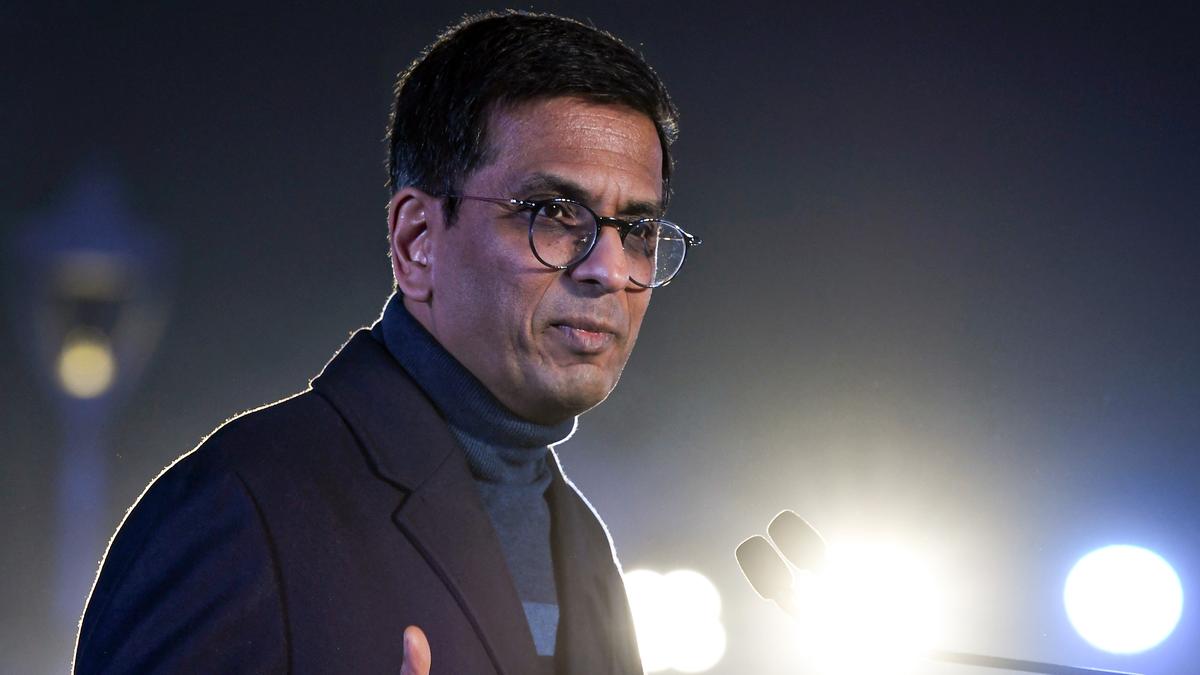
- 03 Oct 2025
In News:
- The Ayodhya title dispute judgment—a landmark decision of the Supreme Court—was founded on the principle of “preponderance of probabilities”, a key evidentiary standard in civil law. Former
- Chief Justice of India D.Y. Chandrachud (part of the 2019 constitutional bench) noted that the verdict was based not on religious sentiment or historical conjecture, but on civil law principles of possession and probability regarding ownership of the inner and outer courtyards of the disputed site.
Understanding the Principle of Preponderance of Probability
- The preponderance of probability is the standard of proof used in civil proceedings to determine whether a fact or claim is more likely to be true than false.
- It represents a balance of likelihoods, where the court weighs the evidence from both sides and accepts the version that appears more probable based on the available proof.
- Unlike the criminal law standard of “beyond a reasonable doubt”, which requires a very high degree of certainty before convicting an accused, the civil standard merely requires showing that a claim is more likely than not.
Key Features
- A fact is considered proved if the court believes it exists on the balance of probabilities, as defined under Section 3 of the Indian Evidence Act, 1872.
- The party bearing the burden of proof (typically the plaintiff) must present evidence that outweighs the opposing party’s version.
- The court does not demand absolute proof but relies on weighing evidence and drawing reasonable inferences.
This principle was elaborated in the case Narayan Ganesh Dastane v. Sucheta Narayan Dastane (1975), where the Supreme Court held that civil cases are determined based on which side’s evidence appears more credible, not necessarily conclusive.
Application in Civil Law
The preponderance of probability is the cornerstone of civil litigation, especially in matters relating to:
- Property and ownership disputes
- Contract enforcement
- Tort claims
- Family law and matrimonial matters
For instance, in a breach of contract case, a plaintiff only needs to establish that it is more likely than not that the contract was violated, rather than proving it beyond all possible doubt.
Ayodhya Judgment: Application of Civil Law Principles
In the Ayodhya title dispute case (2019), the Supreme Court applied the civil law test of possession and preponderance of probabilities to resolve competing claims over the disputed land.
The Court’s approach was rooted in legal reasoning rather than theological or emotive considerations.
Key Legal Reasoning
- The Court examined historical records, revenue documents, and testimonies to determine who had better evidence of possession of the inner and outer courtyards.
- The verdict concluded that while both Hindu and Muslim communities had worshipped at the site, the Hindus had stronger evidence of continued possession of the outer courtyard and belief in the Ram Janmabhoomi.
- The Muslim parties could not sufficiently establish exclusive possession of the inner courtyard before 1857.
- Hence, the balance of probabilities favored the Hindu claimants for ownership and management rights of the site.
Importantly, the judgment relied purely on civil law principles of possession and balance of probabilities, not on any assertion that the mosque’s construction was a desecration—a claim that does not feature in the 2019 verdict, despite later commentary.
Significance of the Principle
- Reinforces the objectivity of civil adjudication, where factual probabilities outweigh moral or religious narratives.
- Demonstrates the distinction between civil and criminal standards of proof in Indian jurisprudence.
- Ensures fairness in property disputes, where ownership is determined by evidence and not sentiment.
- Serves as a model case for the application of the Indian Evidence Act in balancing complex historical and legal claims.
Maitri 2.0 Cross-Incubation Programme
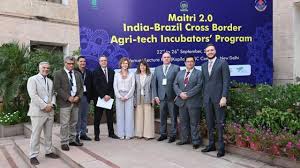
- 02 Oct 2025
In News:
The Indian Council of Agricultural Research (ICAR) recently launched the second edition of the Brazil–India Cross-Incubation Programme in Agritech (Maitri 2.0) in New Delhi. The initiative brings together innovators, startups, and research institutions from both countries to strengthen bilateral cooperation and build a more resilient and inclusive agri-food ecosystem.
About Maitri 2.0:
- Two-Way Learning Platform: Facilitates co-creation between Indian and Brazilian innovators, enabling mutual exchange of knowledge, best practices, and technology solutions.
- Objectives:
- Strengthen incubator linkages between India and Brazil.
- Promote co-incubation models and innovation-driven collaboration.
- Open opportunities in sustainable agriculture, digital technologies, and agri-value chain development.
- Foster inclusive ecosystems that directly benefit farmers and support global food security.
Strategic Significance:
Maitri 2.0 reflects the broader India–Brazil strategic partnership, aligning with their shared vision in agriculture, emerging technologies, and food and nutritional security. It builds on historical collaborations and complements global platforms such as BRICS and G20, highlighting both nations’ roles in addressing food security and climate-resilient agriculture.
Siphon-Powered Desalination
- 02 Oct 2025
In News:
- Researchers at the Indian Institute of Science (IISc), Bengaluru, have developed an innovative siphon-powered thermal desalination system that can transform seawater into potable water faster, cheaper, and more reliably than existing technologies.
- The breakthrough addresses long-standing challenges in solar desalination, such as salt buildup and limited wicking height, offering a scalable solution for water-stressed regions.
How the Siphon-Powered System Works:
- Composite Siphon: A fabric wick paired with a grooved metal surface continuously draws seawater from a reservoir.
- Gravity Flow: Ensures smooth movement and flushes away salt before crystallization occurs.
- Thin-Film Evaporation: Water spreads as a thin layer on heated metal surfaces and evaporates efficiently.
- Ultra-Narrow Air Gap: Vapor condenses just 2 mm away on a cooler surface, enhancing efficiency.
- Multistage Stacking: Multiple evaporator–condenser pairs recycle heat, maximizing water output.
Key Features and Advantages:
- High Efficiency: Produces more than 6 litres of potable water per square metre per hour under sunlight, significantly higher than conventional solar stills.
- Low-Cost Materials: Uses aluminum and fabric, making it affordable and easy to deploy.
- Energy Flexibility: Operates on solar energy or waste heat, enabling off-grid functionality.
- Durability: Can handle highly saline water (up to 20% salt) without clogging.
- Scalability: Suitable for villages, coastal areas, disaster zones, and island nations.
Significance:
- Water Security: Provides a sustainable solution for drinking water scarcity in remote and off-grid regions.
- Innovation Leap: Overcomes technical limits of traditional solar stills, particularly salt scaling and wicking height.
- Sustainable Development: Eco-friendly, low-cost, and aligned with SDG 6 (Clean Water and Sanitation).
Supported by India’s Department of Science and Technology (DST) and published in Desalination, this technology could make the ocean a reliable source of fresh water for millions, emphasizing simplicity, salt resistance, and scalability as its core strengths.
Special and Differential Treatment (SDT)
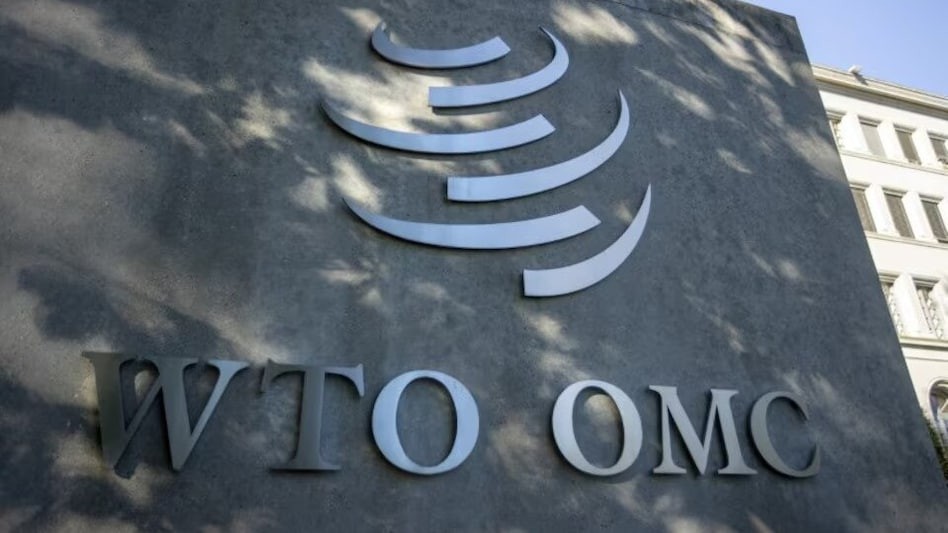
- 02 Oct 2025
In News:
China has announced that it will continue to be classified as a developing country within the World Trade Organization (WTO) but will no longer seek Special and Differential Treatment (S&DT) in future negotiations.
About Special and Differential Treatment (S&DT):
- S&DT grants developing and least-developed countries (LDCs) flexibilities in implementing WTO obligations, including longer deadlines, preferential market access, safeguard measures, and technical assistance.
- Introduced under GATT in the 1960s and formalized in WTO agreements (1995) and the Doha Development Agenda (2001).
- LDCs receive additional automatic benefits; other countries self-declare their status, subject to challenge by WTO members.
Significance of China’s Decision:
- China, historically a major beneficiary of S&DT, will forego such benefits while retaining its developing country status.
- The move signals support for multilateral trade and contributes to WTO reform, addressing concerns raised by the United States and others over selective access to S&DT.
- It highlights the tension between economic capabilities and self-declared developing status, especially among major economies.
Implications:
- Encourages balanced WTO negotiations and strengthens the global trading system.
- Marks a step towards aligning development considerations with global economic realities without relinquishing China’s role in the Global South.
L-1 Visa
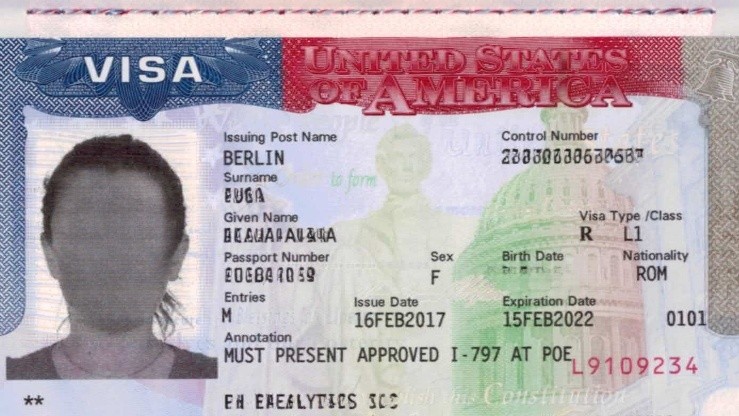
- 30 Sep 2025
In News:
The U.S. administration’s decision to impose a steep $100,000 fee on new H-1B visa applications has reignited debate over whether the L-1 visa could serve as a practical alternative for Indian professionals. While both facilitate skilled migration, they serve distinct purposes and cater to different categories of workers.
About the L-1 Visa
- Nature and Purpose:
- The L-1 visa is a non-immigrant work visa designed for intra-company transfers within multinational corporations.
- It enables global firms to relocate executives, managers, and employees with specialized knowledge from their overseas branches to U.S. offices.
- Introduced under the Immigration and Nationality Act (1965), it aims to promote international business operations and internal talent mobility without depending on the external labour market.
- Categories:
- L-1A: For executives and managers; maximum stay of 7 years.
- L-1B: For employees with specialized knowledge; maximum stay of 5 years.
Applicants must have worked at least one continuous year abroad for the same company within the preceding three years.
Key Features and Advantages
- No Cap or Lottery: Unlike the H-1B, the L-1 has no annual quota or lottery system, allowing year-round applications.
- Blanket Petitions: Large multinationals can file blanket petitions for quicker processing.
- Dual Intent: L-1 holders can apply for a green card without jeopardizing their visa status.
- Dependent Work Rights: Spouses on L-2 visas can work freely in the U.S., offering significant flexibility for families.
- Corporate Convenience: Firms can manage global mobility efficiently, especially for leadership or niche technical roles.
Limitations and Challenges
- Narrow Eligibility: Only employees of the same multinational company are eligible. The visa cannot be used to switch to another employer in the U.S.
- High Scrutiny: U.S. consulates, especially in India, closely scrutinize “specialized knowledge” claims, leading to higher rejection rates than H-1B visas.
- Time-Bound Stay: L-1 visas have strict duration limits and cannot be extended while awaiting permanent residency.
- No Portability: The visa binds the employee to the sponsoring company, unlike H-1B holders who can change employers under certain conditions.
L-1 vs H-1B: The Key Differences
|
Aspect |
L-1 Visa |
H-1B Visa |
|
Purpose |
Intra-company transfer |
Employment in speciality occupation |
|
Eligibility |
Must have worked abroad for the same company |
Bachelor’s degree in speciality field |
|
Annual Cap |
No cap |
85,000 new visas per year |
|
Employer Flexibility |
Cannot switch companies |
Can change employers (with transfer approval) |
|
Wage Requirement |
No prevailing wage rule |
Must meet U.S. Department of Labor’s wage standards |
|
Processing System |
No lottery |
Lottery-based selection |
|
Dependent Work Rights |
L-2 spouse can work freely |
H-4 spouse requires separate authorization |
|
Maximum Stay |
5–7 years (non-extendable beyond limits) |
6 years (extendable in green card process) |
AI-enabled Centre at Betla National Park
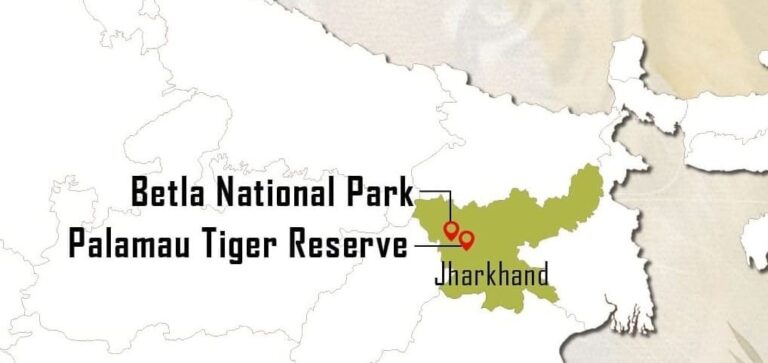
- 27 Sep 2025
In News:
Betla National Park, located in Latehar district, Jharkhand, will soon host India’s first AI-enabled nature experience centre. Part of the Palamu Tiger Reserve (PTR), the park is known for its rich biodiversity, including tigers, elephants, and diverse flora and fauna. PTR is one of the first nine tiger reserves established under Project Tiger (1973), covering a total area of 1,129.93 sq. km, and was notified as a National Park in 1986.
About the AI-Enabled Centre
The centre, developed by Palamu Tiger Reserve authorities under Deputy Director Prajesh Kant Jena, aims to provide visitors with an immersive, high-tech wildlife experience. Unlike conventional nature interpretation centres, it will use cutting-edge technologies to recreate the dynamics of the jungle ecosystem, including:
- AI assistants for guided learning.
- 3D holographic projections to display lifelike animal behaviour.
- Augmented Reality (AR) and immersive sound effects to simulate waterfalls, bird calls, predator-prey interactions, and herd movements.
- Ecosystem simulation, portraying animal movement, food-sharing activities, and other natural behaviours in a realistic manner.
Purpose and Significance
The centre, themed “Threads of Nature,” is designed to convey the interconnection between humans and nature. Key objectives include:
- Enhancing eco-tourism by offering a realistic jungle experience, including sightings of tiger hunts, elephant herds, and lions.
- Promoting conservation awareness through interactive learning and observation tools.
- Supporting researchers and nature enthusiasts with virtual wildlife monitoring capabilities.
Unique Features
While nature interpretation centres have existed in Betla since the 1970s, this facility represents the first high-tech effort in India to integrate AI, AR/VR, holograms, and immersive sound for wildlife education. Visitors will not just see static models or photographs but will experience the sights, sounds, and atmosphere of a living jungle, providing a deeper understanding of ecosystem dynamics.
By merging technology with conservation education, the Betla AI-enabled centre is poised to become a pioneering hub for tourism, research, and ecological awareness in Jharkhand and across India.
Combined Operational Review and Evaluation (CORE) Programme
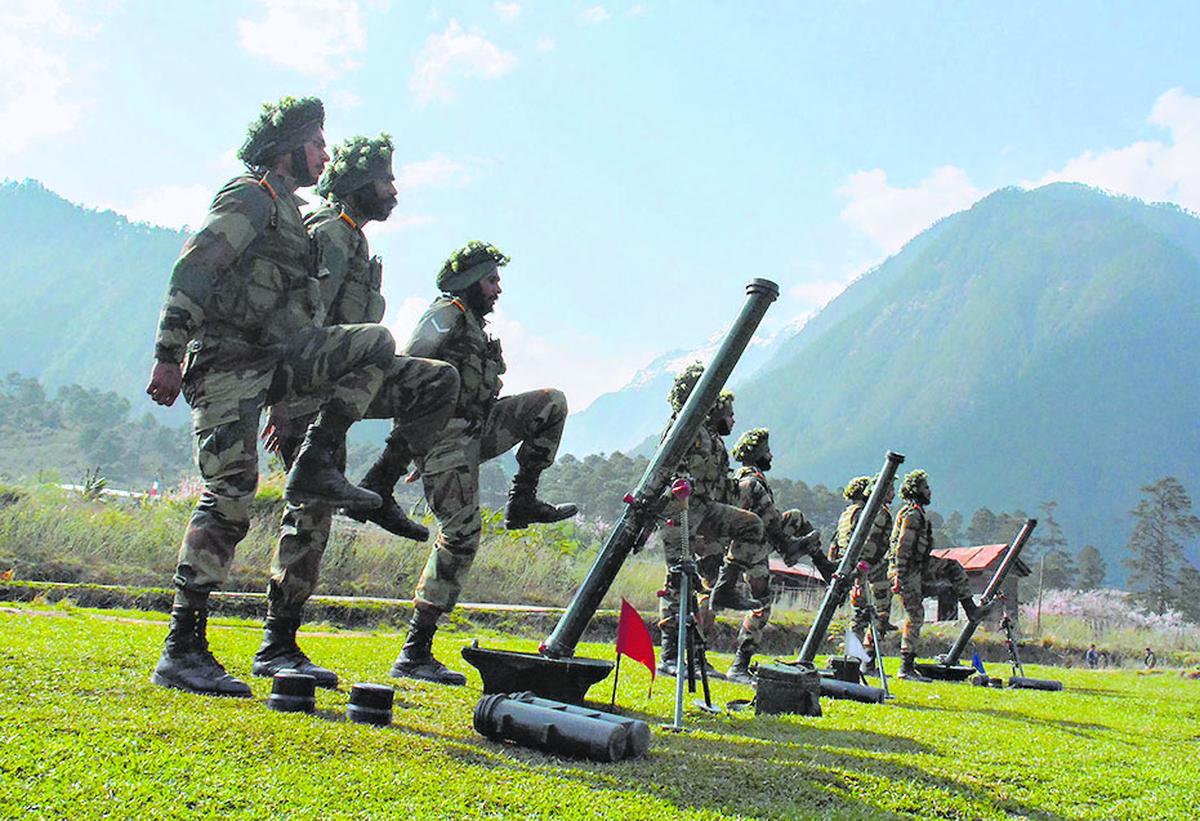
- 27 Sep 2025
In News:
- The Headquarters Integrated Defence Staff (HQ IDS) is organising the Combined Operational Review and Evaluation (CORE) Programme at the United Service Institution of India, New Delhi.
- The initiative serves as a unique platform for civil-military engagement on national and regional security, bringing together senior officers from the Indian Armed Forces alongside officials from the Ministries of Defence, External Affairs, and Home Affairs.
Objectives and Significance
The CORE Programme aims to:
- Strengthen civil-military synergy in addressing multidimensional security threats.
- Enhance strategic awareness among senior officers and develop their capacity for balanced, pragmatic decision-making.
- Foster leadership development and inter-agency coordination in complex national and international security scenarios.
The programme underscores HQ IDS’s commitment to jointness within the Armed Forces and professional development, preparing participants to navigate dynamic security challenges effectively.
Key Themes and Focus Areas
The CORE Programme covers a spectrum of contemporary security issues, including:
- Regional and global security challenges
- Technological transformation of warfare
- Strategic communication
- Inter-agency collaboration and joint problem-solving
The programme employs a combination of lectures, interactive discussions, and sessions with subject-matter experts and professionals from diverse fields. This approach broadens participants’ outlook, encourages collaborative solutions, and strengthens the intellectual foundations of senior leadership.
Participants
The five-day programme brings together senior civil and military officers, facilitating a holistic understanding of national security from multiple perspectives. By promoting dialogue across the defence and civilian sectors, CORE enhances preparedness to address complex, multidimensional threats at both national and international levels.
World’s 1st Functioning AI-designed Viral Genome
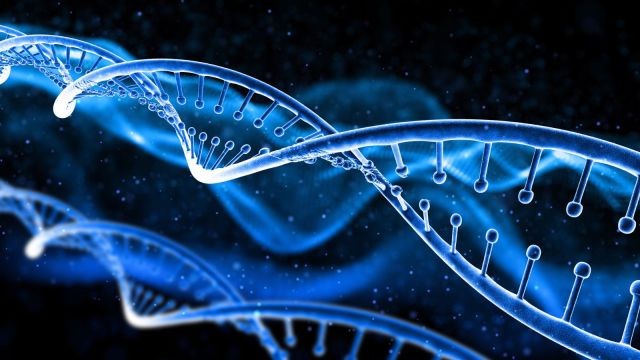
- 26 Sep 2025
In News:
Scientists at Stanford University and the Arc Institute have created the world’s first artificially designed viral genome using Artificial Intelligence (AI), marking a major milestone in computational biology and synthetic genomics. The breakthrough demonstrates AI’s capability to generate an entirely new and functional virus—one that can infect and kill bacteria.
About the Discovery
The AI-generated virus was designed using a genomic model called Evo, which functions like a “language model” for DNA. Evo was trained on nearly two million viral genomes, learning the patterns and grammar of genetic sequences—akin to how language models learn human syntax and semantics.
The model was guided to mimic the bacteriophage ΦX174 (phi-X-174), a virus that infects E. coli bacteria. This phage was chosen because:
- It has a small yet complex genome (about 5,386 DNA letters and 11 overlapping genes).
- It was the first genome ever sequenced (1977) and the first synthesized from scratch (2003)—now it is the first AI-designed genome.
How It Was Done
- Training the AI: Evo was trained on millions of viral sequences to understand gene order, composition, and regulatory logic.
- Design Phase: Using prompts, Evo generated thousands of potential genome designs.
- Screening & Testing: Researchers filtered these using software checks to ensure each genome contained the necessary genes and functional proteins.
- Lab Validation: Hundreds of genomes were synthesized and inserted into E. coli bacteria. Out of 302 attempts, 16 fully functional viruses emerged.
- Results:
- These viruses contained over 392 mutations never seen in nature.
- Some designs achieved functions human scientists had failed to engineer, such as borrowing DNA-packaging proteins from unrelated viruses.
- Cryo-electron microscopy confirmed the structural integrity of these AI-designed proteins within the viral shell.
What is a Virus?
A virus is a microscopic infectious agent made of nucleic acid (DNA or RNA) enclosed within a protein coat (capsid).
- It cannot replicate independently and must hijack a host cell’s machinery to reproduce.
- Many viruses cause diseases like COVID-19, AIDS, measles, and smallpox.
What is a Genome?
The genome is the complete set of DNA instructions in an organism.
- In humans, it comprises 23 pairs of chromosomes in the nucleus plus mitochondrial DNA.
- It encodes all genetic information required for growth, development, and functioning.
Significance of the Breakthrough
- Redefining Synthetic Biology:The experiment represents a leap from reading and writing genomes to designing them. AI is now capable of generating entirely new, functional genetic blueprints.
- Advancing Phage Therapy:The AI-designed bacteriophages could revolutionize phage therapy—the use of viruses to target and kill antibiotic-resistant bacteria, a major global health threat.
- Accelerating Biotechnology:This development showcases how AI can drastically accelerate genetic innovation, enabling rapid design and testing of new biological entities.
- Proof of Concept for AI-Driven Evolution:AI-generated viruses adapted to bacterial defenses faster than natural ones, indicating potential for directed evolution through computational models.
- Ethical and Regulatory Implications:While promising, the creation of new synthetic organisms underscores the need for global biosafety, biosecurity, and ethical frameworks to govern AI-driven genetic design.
Papikonda National Park
- 25 Sep 2025
In News:
A recent study published in the Records of the Zoological Survey of India has documented 51 species of herpetofauna — including amphibians and reptiles — in Papikonda National Park, located in the northern part of the Eastern Ghats, Andhra Pradesh. This comprehensive survey marks a significant step in understanding the region’s biodiversity, which has remained largely underexplored.
Key Findings of the Study
Researchers recorded 18 amphibians, 21 lizards, 10 snakes, and 2 turtles through extensive fieldwork conducted between September 2021 and February 2023. The study revealed three species — Minervaryakalinga, Sphaerothecamaskeyi, and Hemidactylus kangerensis — reported for the first time in Andhra Pradesh.
According to the IUCN Red List (2024):
- 46 species are listed as Least Concern,
- 3 species are Not Yet Assessed,
- Hemidactylus kangerensis is Endangered, and
- Lissemyspunctata is Vulnerable.
Under the Wildlife (Protection) Act, 2022, several species enjoy legal protection:
- Schedule I:Chamaeleozeylanicus, Calodactylodes aureus, Pangshura tentoria, Lissemyspunctata
- Schedule II:Hoplobatrachustigerinus, Euphlyctiscyanophlyctis
The study also highlighted rare species such as Psammodynastespulverulentus and Argyrophisdiardii, the latter recorded for the first time in the Eastern Ghats. Two Eastern Ghats endemics — the Indian golden gecko (Calodactylodes aureus) and Dutta’s Mahendragiri gecko (Hemidactylus sushilduttai) — were also documented.
About Papikonda National Park
- Location: East and West Godavari districts, Andhra Pradesh
- Area: Approximately 1,012.86 sq km
- Established: Declared a Reserved Forest (1882), Wildlife Sanctuary (1978), and upgraded to National Park (2008)
- Landscape: Rugged terrain of the Eastern Ghats, divided by the Godavari River, with elevation ranging from 20–850 metres
- Geographical Features: Contains 62 named mountains, including Devara Konda (highest point) and Verala Konda (most prominent peak)
- Recognition: Identified as an Important Bird and Biodiversity Area (IBA) by BirdLife International
Flora and Fauna
- Vegetation: Tropical moist deciduous, semi-evergreen, and dry deciduous forests.
- Flora: Teak, rosewood, sandalwood, bamboo, sal, mahua, pterocarpus, terminalia, cassia, and eucalyptus.
- Fauna: Bengal tiger, Indian leopard, sloth bear, dhole (wild dog), sambar, and spotted deer.
- Unique Feature: Home to the “KanchuMekha”, a rare dwarf goat breed native to the region.
Conservation Significance
- The study provides baseline data crucial for biodiversity conservation and monitoring in the Eastern Ghats. Researchers warned that herpetofaunal populations face multiple threats — including habitat loss, fragmentation, emerging diseases, and climate change.
- Rare and threatened species like the Jeypore Hill Gecko (Geckoellajeyporensis), Barkud Spotted Skink (Barkudiainsularis), and King Cobra (Ophiophagus hannah) emphasize the need for targeted conservation strategies.
- The authors advocated for systematic surveys and integrated taxonomic approaches across the Eastern Ghats to enhance understanding of species distribution and to strengthen regional conservation planning.
DadasahebPhalke Award for 2023
- 25 Sep 2025
In News:
In a major recognition of artistic excellence, the Government of India has announced that legendary actor, director, and producer Shri Mohanlal Viswanathan Nair will be conferred with the DadasahebPhalke Award for the year 2023, the highest honour in Indian cinema.
About the DadasahebPhalke Award
The DadasahebPhalke Award is India’s highest honour in the field of cinema, instituted in 1969 to commemorate the birth centenary of DadasahebPhalke, widely regarded as the Father of Indian Cinema.
- Inaugural Recipient: Devika Rani (1969)
- Presented by: The President of India
- Award Components: Swarna Kamal (Golden Lotus) medallion, a shawl, and a cash prize of ?10 lakh
- Purpose: To recognise individuals for their outstanding lifetime contribution to the growth and development of Indian cinema.
About DadasahebPhalke
Dhundiraj Govind Phalke (1870–1944), born in Trimbak, Maharashtra, was a painter, photographer, playwright, and filmmaker. He directed India’s first full-length feature film, Raja Harishchandra (1913), which laid the foundation for Indian cinema. His pioneering vision and creative ingenuity earned him the title of “Father of Indian Cinema.”
Significance
The conferment of the DadasahebPhalke Award on Mohanlal marks a momentous chapter in Indian cinematic history. It recognises not just his artistic brilliance but also his contribution in shaping Indian cinema as a powerful medium of cultural expression. His journey from Kerala to global acclaim embodies the spirit of Indian creativity and excellence celebrated through this prestigious award.
Fentanyl Blacklist
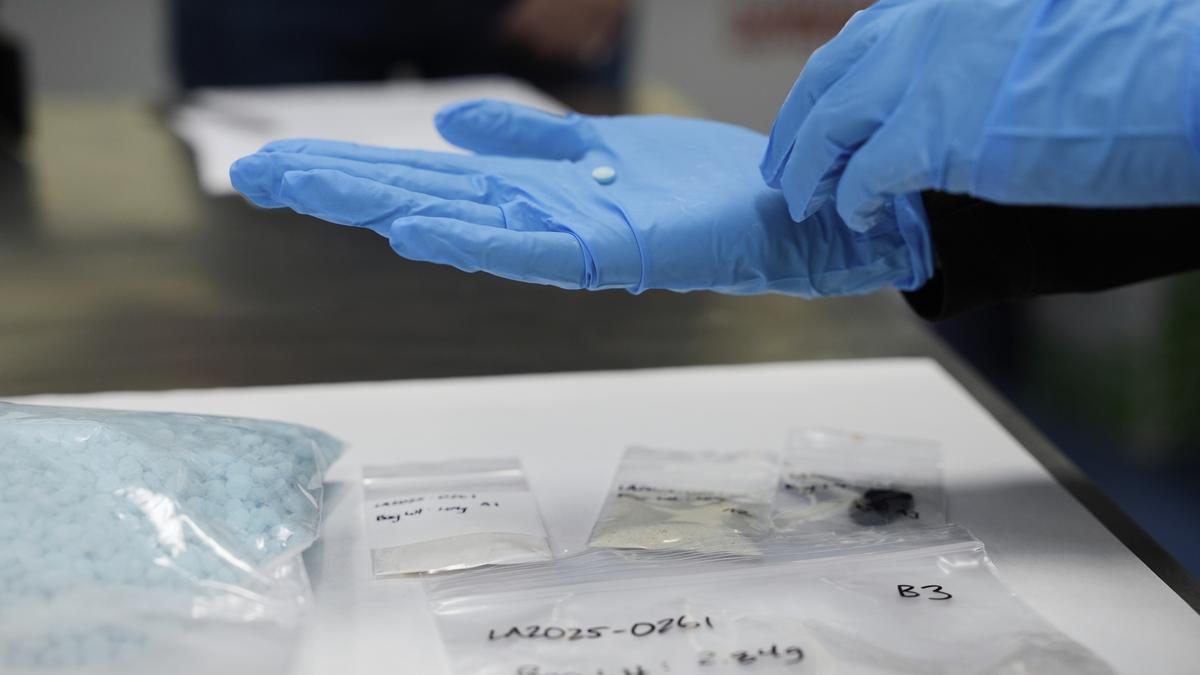
- 24 Sep 2025
In News:
The United States has intensified its global campaign against fentanyl, a powerful synthetic opioid responsible for tens of thousands of overdose deaths annually. In its latest narcotics control measures, the U.S. has imposed visa bans on Indian business executives allegedly linked to the trafficking of fentanyl precursor chemicals, reflecting growing scrutiny of global supply chains originating in Asia.
Background: The Major’s List and India’s Inclusion
- In the latest “Major’s List” submitted to the U.S. Congress, President Donald Trump identified 23 countries as major sources or transit hubs for illicit drugs — particularly fentanyl — posing a threat to American citizens.
- The list includes India, Pakistan, China, and Afghanistan, among others. While inclusion does not imply failure in counter-narcotics efforts, it highlights each nation’s role in the production or transit of controlled substances and precursor chemicals.
- Countries such as Afghanistan, Bolivia, Myanmar, Colombia, and Venezuela were categorized as having “failed demonstrably” to meet international drug-control obligations.
Understanding Fentanyl:
Fentanyl was first synthesized in the 1960s for legitimate medical use as a potent painkiller. However, illicitly manufactured variants now dominate the U.S. illegal drug market.
- It is 50 times stronger than heroin, and just 2 milligrams can be fatal, as it suppresses the brain’s respiratory centers.
- Between August 2023 and August 2024, more than 57,000 Americans died of opioid overdoses, primarily linked to fentanyl.
- In 2022, the U.S. Drug Enforcement Administration (DEA) seized enough fentanyl to deliver 379 million lethal doses—enough to kill the U.S. population.
The crisis has been termed the “opioid epidemic”, driving unprecedented public health and security responses in the U.S.
Fentanyl Precursors and the Challenge of Regulation
- Unlike plant-based drugs such as heroin or cocaine, fentanyl is lab-synthesized from chemical precursors like N-phenethyl-4-piperidone (NPP) and 4-anilino-N-phenethylpiperidine (4-ANPP).
- These compounds have legitimate pharmaceutical and industrial uses, complicating global regulatory oversight. Small quantities of these chemicals can yield large volumes of fentanyl, and they are easily concealed in international shipments through mislabelling or false customs declarations.
- This has made it difficult for authorities to distinguish between lawful trade and diversion into illicit production networks.
Global Fentanyl Supply Chain
The global fentanyl network involves multiple countries across different stages of production and distribution:
- China and India are key producers of precursor chemicals, some of which are diverted to illegal channels.
- Mexican cartels synthesize fentanyl using these precursors, convert it into powder or counterfeit pills, and smuggle it into the U.S. through the southwest border.
This multi-tiered chain, combined with e-commerce and courier systems, has created a complex and decentralized trafficking web, challenging traditional interdiction mechanisms.
U.S. Domestic and Global Enforcement Measures
Domestically, the U.S. has expanded DEA operations, seizures, and public health initiatives to counter the crisis:
- Nationwide naloxone distribution to reverse overdoses in emergencies.
- Public awareness campaigns warning of counterfeit prescription pills laced with fentanyl.
- Enhanced treatment and rehabilitation programs to curb addiction and demand.
Internationally, Washington has combined criminal prosecution, trade measures, and sanctions to curb the flow of fentanyl and its precursors.
- In February 2025, additional tariffs were imposed on imports from China, Canada, and Mexico to pressure stronger enforcement; these were later suspended for Canada and Mexico after improved border controls.
- The U.S. has also sought to align global chemical control frameworks through the UN and bilateral agreements.
India’s Position
India, while listed as a “major drug transit or producing country,” has not been accused of state complicity. The issue primarily involves private firms and individuals engaged in illicit chemical exports. Indian authorities are expected to strengthen precursor control mechanisms, enhance customs surveillance, and ensure regulatory compliance within the pharmaceutical and chemical industries.
The episode underscores India’s dual challenge — balancing its role as a legitimate pharmaceutical exporter while preventing misuse of chemical manufacturing capacity.
‘One-In, One-Out’ Migration Scheme
- 24 Sep 2025
In News:
- An Indian national has become the first person to be deported from the United Kingdom to France under the newly launched “one-in, one-out” migration scheme, part of the UK–France Returns Treaty.
- The deportation marks the beginning of a new bilateral arrangement aimed at curbing illegal cross-Channel migration and dismantling human smuggling networks operating between the two countries.
Background and Context
- The deported individual reportedly arrived in the UK illegally via the English Channel in early August 2025 aboard a small boat — one of the most common routes used by irregular migrants. He was subsequently detained and later flown from Heathrow to Paris on an Air France flight, under the provisions of the UK–France returns framework.
- The UK Home Office confirmed that upon arrival in France, the individual would be offered a voluntary, paid-for return to his home country. If he declines, he could face enforced deportation.
- The deportation comes amid a broader crackdown on illegal immigration in the UK, with reports indicating a sharp rise in Indian nationals detained in British immigration centres in recent months.
About the ‘One-In, One-Out’ Scheme
The “one-in, one-out” scheme is a bilateral deportation and migration management arrangement between the United Kingdom and France.
- Objective: To deter illegal small-boat crossings across the English Channel and disrupt human trafficking networks.
- Mechanism: For every illegal migrant returned by the UK to France, the UK will accept one legal asylum seeker from France — hence the name “one-in, one-out.”
- Implementation Period:August 2025 to June 2026, operating as a pilot programme subject to review.
- Provisions:
- Fast-track deportations for illegal entrants.
- Voluntary return option with financial assistance for deported migrants.
- Judicial oversight allowing courts to review last-minute appeals swiftly.
Significance of the Agreement
- Border Security: Strengthens the UK’s capacity to manage and deter illegal migration.
- International Cooperation: Demonstrates growing cross-border coordination between the UK and France on migration governance.
- Policy Shift: Reflects a move towards reciprocal responsibility in handling irregular migration.
- Political Impact: Reinforces the UK government’s tough stance on illegal immigration while maintaining humanitarian commitments.
India Re-elected to the Universal Postal Union’s Governing Bodies
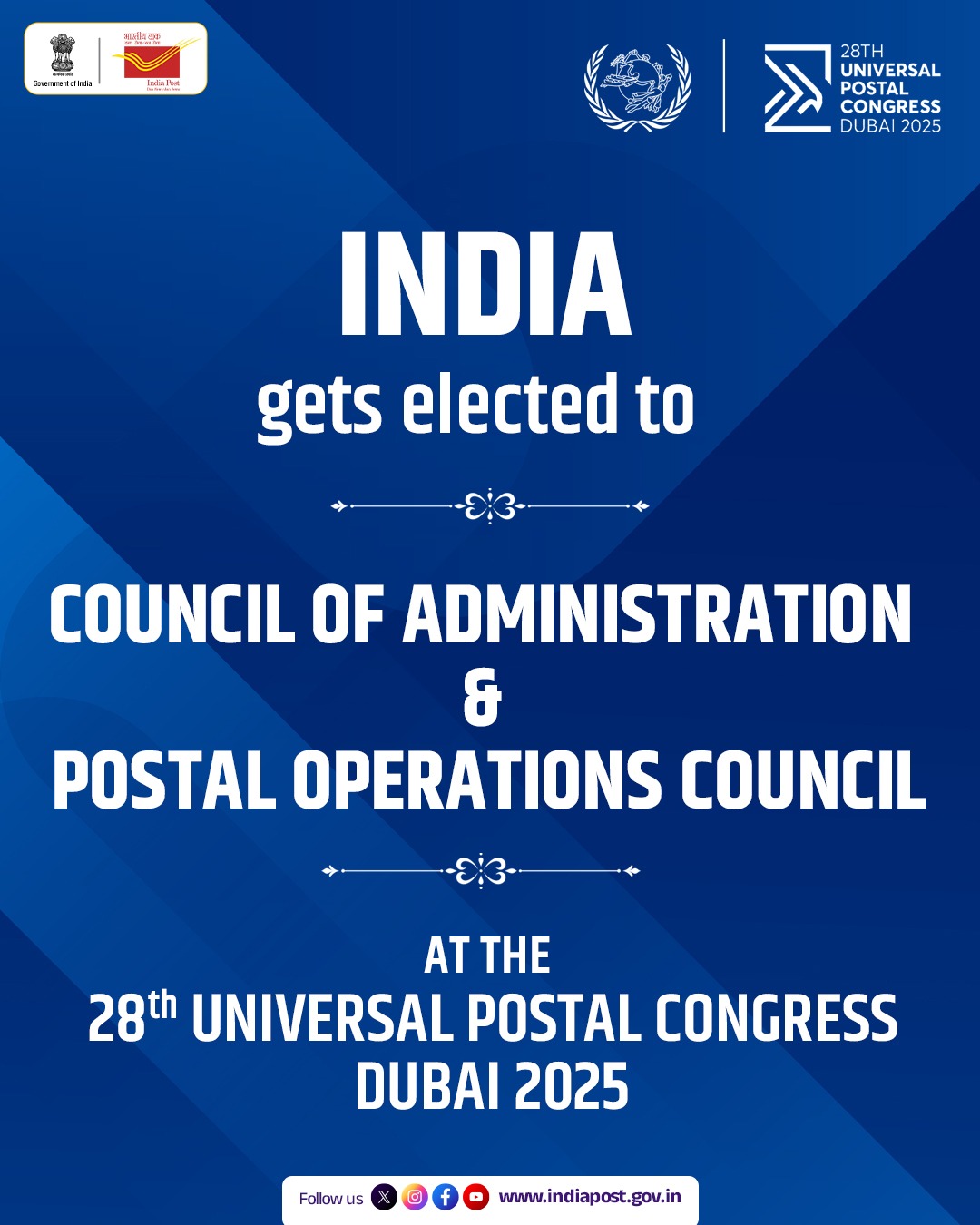
- 23 Sep 2025
In News:
- India has been re-elected to the Council of Administration (CA) and the Postal Operations Council (POC) of the Universal Postal Union (UPU) during the 28th Universal Postal Congress held in Dubai.
- This re-election reaffirms global confidence in India Post’s leadership, digital reforms, and commitment to inclusive postal development, strengthening India’s voice in shaping international postal governance.
About the Universal Postal Union (UPU)
- Founded: 1874 under the Treaty of Bern
- Headquarters: Berne, Switzerland
- Members: 192 countries
- Status: A specialized agency of the United Nations, it is the second-oldest international organization after the International Telecommunication Union (ITU).
Mandate and Objectives
- To promote global postal cooperation and ensure universal connectivity in mail and parcel delivery.
- To establish standards, regulations, and tariffs for international postal exchanges.
- To enhance efficiency, affordability, and reliability of postal services globally.
- To facilitate the growth of e-commerce and cross-border logistics through modern postal systems.
Governance Structure of UPU
The UPU functions through four key organs:
- Congress:
- The supreme decision-making body, convened every four years.
- Sets the long-term strategy, budget, and policy framework for global postal operations.
- Council of Administration (CA):
- Handles policy, legal, administrative, and regulatory issues between Congress sessions.
- Oversees the implementation of Congress decisions and coordinates global postal governance.
- Postal Operations Council (POC):
- The technical and operational body comprising 48 elected member countries.
- Works on service innovation, quality enhancement, digital integration, and modernisation of global postal systems.
- International Bureau:
- The secretariat of the UPU providing logistical, analytical, and technical support to member states and councils.
Significance of India’s Re-election
- Endorsement of Leadership: India’s re-election underscores the international community’s trust in its postal transformation, particularly in digital and financial inclusion.
- Modernisation Initiatives: India Post’s progress in e-commerce facilitation, postal banking, logistics efficiency, and technology-driven governance has positioned it as a model for developing nations.
- Strategic Representation: Through its roles in both CA and POC, India can influence policy formulation, standard setting, and capacity-building initiatives within the UPU.
- Global Collaboration: Reinforces India’s vision of “One World, One Postal Network”, aligning with its broader digital diplomacy and South-South cooperation goals.
India and the UPU: A Historical Perspective
- India joined the UPU in 1876, just two years after its establishment.
- Over the decades, it has played a constructive role in strengthening postal connectivity across the Global South.
- Under the leadership of the Ministry of Communications, India Post has transitioned from traditional mail delivery to offering digital, financial, and logistical services, supporting Digital India and Atmanirbhar Bharat missions.
Trump Imposes $100,000 Fee On H-1B Visas
- 23 Sep 2025
In News:
- In a significant policy shift, U.S. President Donald Trump signed a proclamation in October 2025 introducing a $100,000 (≈ ?88 lakh) sponsorship fee for H-1B visas, dramatically raising the cost for U.S. companies hiring foreign skilled workers.
- The move, presented as a measure to “protect American jobs,” marks one of the most stringent immigration-related economic policies in recent years and has wide-ranging implications for India’s IT sector, which remains the largest user of H-1B visas.
About the Policy
- New Regulation: U.S. employers sponsoring an H-1B worker must now pay a non-refundable fee of $100,000 per application, a steep increase from the earlier few-thousand-dollar processing cost.
- Official Objective: To ensure that only “highly skilled, non-substitutable” professionals are brought into the U.S., while deterring misuse of the program by firms replacing American workers with cheaper foreign labour.
- Rationale: According to the U.S. administration, the H-1B system is one of the most abused visa categories, often exploited by outsourcing companies to fill mid-level tech roles at lower wages.
Understanding the H-1B Visa
The H-1B is a non-immigrant U.S. work visa that allows companies to hire foreign professionals in specialty occupations requiring technical or theoretical expertise—mainly in STEM, finance, healthcare, and IT sectors.
- Introduced: Under the Immigration Act of 1990
- Eligibility: Bachelor’s degree or equivalent in a relevant field
- Tenure: Valid for 3 years, extendable up to 6 years (and beyond if Green Card process is ongoing)
- Quota: 65,000 general visas + 20,000 reserved for advanced U.S. degree holders
- Equal Pay Mandate: Employers must offer wages comparable to those of American workers to prevent labour exploitation
Applications are processed through the USCIS lottery system, which randomly selects qualified candidates.
Impact on India
1. Economic & Corporate Impact
- Cost Escalation: Indian IT majors like TCS, Infosys, and Wipro, which collectively sponsor thousands of H-1B employees annually, will face a steep rise in operational expenses.
- Reduced Hiring Abroad: Companies may shift high-skill operations back to India or relocate nearshore to countries such as Canada or Mexico to avoid the inflated cost.
- Automation Drive: Higher labour costs may accelerate automation and AI adoption within U.S. operations, reducing dependence on human capital from abroad.
2. Workforce & Migration Implications
- Major Beneficiaries Affected: Indians account for nearly 71% of all H-1B approvals, followed by China (≈12%).
- Extended Burden: Since most Indian professionals renew their H-1B multiple times due to the 10–15 year Green Card backlog, the cumulative cost will be enormous.
- Talent Diversion: The measure could divert Indian talent toward Canada, the EU, or Australia, which have relatively liberal skilled-migration policies.
‘Gold Card’ Visa Scheme
Alongside the H-1B fee hike, Trump announced a ‘Gold Card Visa Program’:
- Entry Fee: $1 million for individuals and $2 million for businesses.
- Objective: To attract “extraordinary individuals” capable of creating jobs and investments in the U.S. economy.
- Economic Rationale: The administration projects billions in revenue from the program to help reduce public debt and taxes.
- Selective Entry Policy: The move signals a shift from a skill-based to a wealth-based migration system, prioritizing elite entrepreneurs and investors over mid-level professionals.
Broader Policy Context
- The Trump administration has revived tougher citizenship tests, reinstating a 128-question civics and history exam (scrapped by the Biden government earlier), reflecting a wider push for restrictive immigration vetting.
- This marks a continuation of “America First” politics, emphasizing domestic employment protection and economic nationalism.
Implications for India–U.S. Relations
- Technology and Trade Impact: India’s $150+ billion IT export industry—largely dependent on U.S. markets—could face reduced competitiveness and project delays.
- Diplomatic Challenge: New Delhi must engage with Washington to safeguard the interests of Indian professionals and ensure that the visa restrictions do not spill over into bilateral technology and trade cooperation.
- Shift in Talent Dynamics: The policy could push India to strengthen domestic R&D ecosystems and negotiate reciprocal work mobility frameworks under trade agreements.
Global and Strategic Outlook
- Protectionism Resurgence: The policy aligns with a global trend of tightening skilled-migration channels amid economic uncertainty.
- Business Adaptation: U.S. tech firms like Amazon, Microsoft, Meta, and Google, which collectively secured over 25,000 H-1B approvals in early 2025, may now restructure hiring models or expand offshore R&D hubs in India.
- Brain Drain Reversal: Rising visa barriers could retain skilled manpower in India, strengthening domestic innovation capacity under initiatives like “Skill India 4.0” and “Startup India.”
Saudi–Pakistan Strategic Mutual Defence Agreement (SMDA)
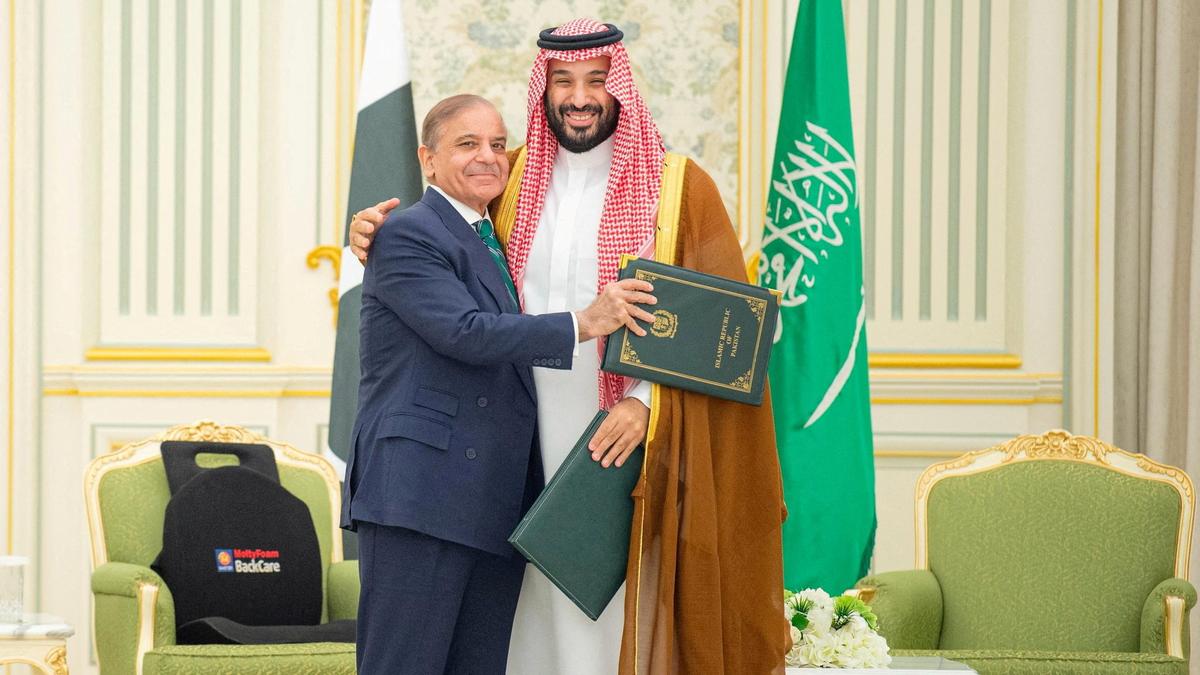
- 23 Sep 2025
In News:
- Recently, Saudi Arabia and Pakistan signed a Strategic Mutual Defence Agreement (SMDA) in Riyadh, formalising a long-discussed framework for joint defence and mutual security.
- The agreement, viewed as a landmark in bilateral ties, symbolises a renewed effort to institutionalise their security partnership amid changing regional dynamics and waning U.S. influence in West Asia.
Nature and Scope of the Pact
- The SMDA commits both nations to collective defence, stipulating that any attack on one country will be treated as an attack on both.
- It builds upon the 1982 Bilateral Security Cooperation Agreement, strengthening channels of military coordination, intelligence exchange, training, and arms trade.
- The pact extends across conventional defence cooperation, advisory roles, and — in principle — joint deterrence, though not explicitly nuclear.
Strategic Context
- The timing of the agreement follows rising regional uncertainty, including Israel–Qatar tensions, Yemen conflict spillovers, and Iran–Saudi rivalry.
- By signing the SMDA, Riyadh signals its intent to pursue greater regional self-reliance in defence, moving beyond full dependence on the U.S. security umbrella.
- For Pakistan, it secures much-needed economic and energy support from Saudi Arabia amid a deep fiscal crisis, while reaffirming its role as a key security partner in the Islamic world.
Key Drivers
- Mutual Security Assurance: Establishes a framework for joint deterrence and defence coordination.
- Economic Complementarity: Opens avenues for Saudi financial assistance, arms procurement, and energy trade with Pakistan.
- Symbolic Islamic Solidarity: Positions Pakistan as a pan-Islamic security contributor, enhancing its strategic visibility.
- Regional Rebalancing: Demonstrates Saudi Arabia’s effort to diversify security partnerships beyond Washington and regional blocs.
Implications
1. For India
- Strategic Caution: While the pact theoretically enables Pakistan to seek Saudi backing in a potential India–Pakistan confrontation, Riyadh’s growing ties with India — including $42.9 billion in bilateral trade, defence collaboration, and major investments — make an overt anti-India stance unlikely.
- Diplomatic Opportunity: New Delhi can leverage its energy and economic partnerships to maintain Saudi neutrality in South Asian affairs.
- Policy Imperative: India must sustain strategic dialogue and ensure Arab neutrality in regional crises through proactive diplomacy.
2. Regional and Global Dimension
- Shift in Gulf Security Architecture: Reflects a decline in U.S. dominance and emergence of a multipolar Gulf order, with Riyadh exploring independent alliances.
- Iran–Saudi–Pakistan Equation: Enhances Saudi deterrence posture against Iran, Yemeni Houthis, and potentially Israel’s unilateral actions.
- Nuclear Sensitivities: Raises concerns about possible nuclear collaboration, though the actual transfer of Pakistani nuclear technology to Saudi Arabia remains highly improbable, constrained by global non-proliferation norms and Israeli sensitivities.
Way Forward for India
- Deepen Defence and Security Cooperation: Expand joint training, exercises, and intelligence exchanges with Saudi Arabia.
- Energy Diplomacy: Pursue long-term crude oil and green hydrogen partnerships to consolidate interdependence.
- Strategic Monitoring: Closely track SMDA implementation, including possible Pakistani troop deployments or defence projects.
- Maritime Synergy: Strengthen India’s presence in the Arabian Sea through naval cooperation to protect vital energy routes.
- Economic Leverage: Utilize India’s market potential and diaspora network as stabilising anchors in Indo-Saudi relations.
Registered Unrecognised Political Parties (RUPPs)
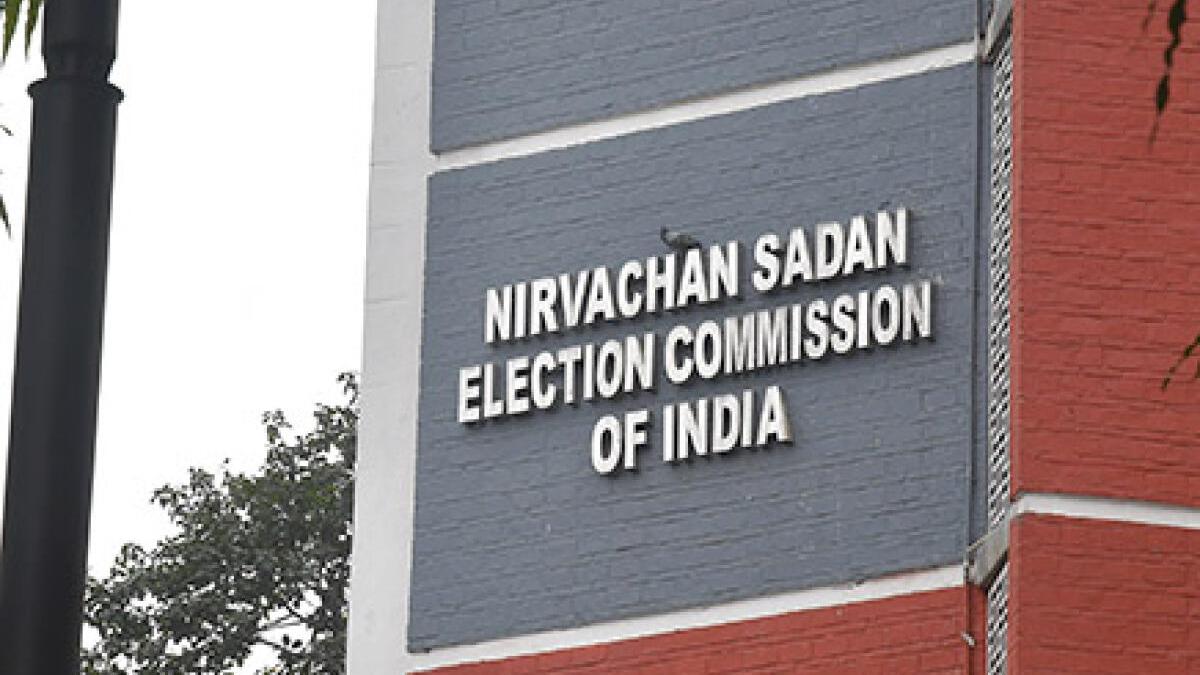
- 21 Sep 2025
In News:
The Election Commission of India (ECI) has de-listed 474 Registered Unrecognised Political Parties (RUPPs) for failing to comply with statutory norms, including not contesting elections in the last six years, as part of its ongoing efforts to clean up the electoral system. This move follows the first phase of de-listing, which removed 334 RUPPs.
About Registered Unrecognised Political Parties (RUPPs)
RUPPs are political entities that are registered with the ECI under Section 29A of the Representation of the People Act (RPA), 1951 but do not yet qualify as state or national parties. They may fall into the following categories:
- Newly registered parties.
- Parties that have not secured sufficient votes to gain state-level recognition.
- Parties that have never contested elections since registration.
Benefits for RUPPs include:
- Tax exemptions under Section 13A of the Income Tax Act, 1961.
- Eligibility for common poll symbols, subject to fielding at least 5% of candidates in state assembly elections.
- Permission to nominate up to 20 ‘star campaigners’ for election canvassing.
Obligations include:
- Contesting elections periodically.
- Filing annual audited accounts and contribution reports.
- Disclosing donations exceeding Rs. 20,000 and restricting cash donations above Rs. 2,000.
Failure to meet these obligations can result in de-listing, as seen in the recent action by the ECI.
Registration and Recognition of Political Parties
Political parties in India are registered with the ECI to avail legal and electoral benefits, including:
- Acceptance of voluntary contributions from individuals and private entities (except government companies).
- Preference in allotment of election symbols to candidates.
- Tax exemptions on donations under Section 13A of the Income Tax Act.
Registered parties that meet additional criteria may gain recognition as State or National Parties, with exclusive privileges:
- Reservation of a unique election symbol.
- Access to free broadcast facilities on Doordarshan and All India Radio.
- Higher campaign expenditure allowances.
- Free copies of electoral rolls before elections.
Criteria for Recognition
State Party: A political party is recognized as a state party if it meets any of the following conditions:
- Wins 3% of seats in the Legislative Assembly in general elections.
- Wins one Lok Sabha seat for every 25 seats allotted to the state.
- Secures at least 6% of votes in a state and wins one Lok Sabha or two Legislative Assembly seats.
- Secures 8% of votes in a state in Lok Sabha or Assembly elections.
National Party: A political party is recognized as a national party if it satisfies any of the following:
- Secures 6% of votes in four or more states in Lok Sabha or Assembly elections and has at least four Lok Sabha members.
- Holds 2% of total Lok Sabha seats with candidates from at least three states.
- Recognized as a state party in at least four states.
Recognition is subject to continuous compliance in subsequent elections; failure to meet the criteria can lead to loss of status.
Significance of De-listing
The de-listing of 474 RUPPs strengthens the electoral system by:
- Ensuring active participation of political parties in the democratic process.
- Promoting transparency in funding and campaign practices.
- Reducing the clutter of inactive or non-compliant parties, thereby making election management more efficient.
This move reflects the ECI’s proactive approach in maintaining a robust and credible electoral framework, which is essential for a healthy democracy in India.
Exercise Pacific Angel 2025
- 20 Sep 2025
In News:
India has joined the United States and Sri Lanka in Exercise Pacific Angel 2025, the largest multilateral disaster response and humanitarian assistance drill in the Indo-Pacific. The exercise signifies growing regional collaboration in humanitarian aid, disaster relief (HADR), and emergency preparedness amid increasing natural and geopolitical challenges in the Indian Ocean region.
About Exercise Pacific Angel 2025
- Host: Sri Lanka (Katunayake Air Base)
- Participants: United States, Sri Lanka, India, Australia, Bangladesh, Japan, and Maldives.
- Troop Strength: Nearly 90 U.S. and 120 Sri Lankan Air Force personnel, along with contingents and observers from partner nations.
- Assets Deployed:
- U.S.: Two C-130J aircraft
- Sri Lanka: Bell 412, B-212 helicopters, and a King Air 350 aircraft
Key Focus Areas
- Search and Rescue (SAR) operations
- Medical readiness and mass casualty response
- Aviation safety and engineering support
- Aeromedical evacuation drills and air mobility exercises
Linked Regional Drills and Strategic Context
The Pacific Angel series forms part of a broader network of U.S.-led multilateral exercises in South Asia aimed at improving interoperability, crisis response, and regional security.
1. Exercise Tiger Lightning 2025
- Host: Bangladesh
- Participants: Bangladesh Army and U.S. Army Pacific
- Objective: Strengthen counter-terrorism, peacekeeping, jungle warfare, and medical evacuation capabilities.
- Highlights: Simulation-based drills, rescue operations, and counterinsurgency coordination.
2. Exercise Tiger Shark 2025 (Flash Bengal Series)
- Host: Bangladesh
- Participants: Bangladesh Navy’s Special Warfare Diving & Salvage Unit, Para Commando Brigade, and U.S. Special Forces.
- Aim: Enhance maritime security, small-unit tactics, and special operations readiness.
- Training Components: Patrol boat handling, small-arms marksmanship, and maritime interdiction.
3. RQ-21 Blackjack UAS Program
- Location: Bangladesh
- Partnership: U.S. Army & Navy with Bangladesh Army and Navy.
- Purpose: Develop indigenous unmanned aerial surveillance capabilities for border monitoring, maritime domain awareness, and UN peacekeeping missions.
- Structure: Establishment of a joint Army-Navy UAS regiment.
Strategic and Geopolitical Significance
- Enhancing Humanitarian Preparedness:Pacific Angel 25 reinforces the ability of Indo-Pacific nations to jointly respond to natural disasters such as cyclones, tsunamis, and earthquakes, ensuring rapid humanitarian assistance and coordination.
- Building Regional Trust and Interoperability:Joint training fosters mutual understanding, operational coordination, and shared standard operating procedures (SOPs) among participating air forces and disaster response agencies.
- Geostrategic Balancing:The U.S. engagement through multilateral drills in Sri Lanka and Bangladesh, both immediate neighbours of India, signals Washington’s intent to expand its strategic presence in South Asia. This move is viewed within the broader Indo-Pacific strategy aimed at maintaining a “free, open, and resilient region” while counterbalancing China’s growing influence.
- India’s Role:India’s participation aligns with its Neighbourhood First, Security and Growth for All in the Region (SAGAR), and Act East policies. It also strengthens HADR diplomacy, reinforcing India’s image as a net security provider in the Indian Ocean.
Draft Civil Drone (Promotion and Regulation) Bill, 2025
- 20 Sep 2025
In News:
- The Ministry of Civil Aviation (MoCA) has released the draft Civil Drone (Promotion and Regulation) Bill, 2025 for public consultation.
- The legislation seeks to create a comprehensive legal framework for the operation, promotion, and regulation of Unmanned Aircraft Systems (UAS) in India, replacing the existing Drone Rules, 2021.
Objective
- The Bill aims to balance innovation with accountability—promoting the growth of India’s drone ecosystem while ensuring public safety, national security, and privacy.
- It aligns with the government’s vision of leveraging drone technology for governance, logistics, agriculture, and surveillance under the Digital Indiaand Make in India initiatives.
Key Provisions
1. Regulatory Authority
- The Directorate General of Civil Aviation (DGCA) will serve as the principal regulator for drone operations.
- The Ministry of Civil Aviation (MoCA) will oversee policy, promotion, and implementation aspects.
2. Scope and Exemptions
- The Bill applies to all civil unmanned aircraft systems (UAS).
- Exempted: UAS operated by the Armed Forces (Army, Navy, Air Force) and those weighing above 500 kilograms.
3. Registration and Certification
- Mandatory Registration: Every drone must obtain a Unique Identification Number (UIN) from DGCA.
- Type Certification: Manufacturing, sale, or operation of drones requires DGCA-approved Type Certificates ensuring safety and airworthiness.
- Remote Pilot Certification: Operators must hold a valid remote pilot license from DGCA or authorized entities.
4. Airspace Regulation — Digital Sky Zones
To ensure safe integration of drones into civil airspace, the Bill formalizes Digital Sky Zones:
- Green Zone: Free flying permitted without prior clearance.
- Yellow Zone: Requires Air Traffic Control (ATC) clearance.
- Red Zone: Restricted areas; operations allowed only with Central Government approval.
5. Safety, Security, and Insurance
- Mandatory third-party insurance for all drone operators to cover liability.
- Safety Features: Anti-tampering, traceability mechanisms, and airworthiness compliance are compulsory.
- Victim Compensation:
- ?2.5 lakh for death
- ?1 lakh for grievous injury
- Claims to be adjudicated by the Motor Accident Claims Tribunal.
6. Penalties and Enforcement
The Bill introduces stringent penalties to ensure responsible drone usage:
- Imprisonment: 3 months to 3 years.
- Fine: Up to ?1 lakh, or both.
- Violations of the Bharatiya Nyaya Sanhita (BNS), 2023 and Bharatiya Nagrik Suraksha Sanhita (BNSS), 2023related to drone misuse will be cognisable offences.
- Confiscation Powers: DGCA officers, authorized personnel, or police may seize drones, electronic devices, or records if rules are violated.
7. Industry and Stakeholder Involvement
The Bill encourages industry participation and innovation while enforcing compliance. The Drone Federation of India noted that the previously liberalised Drone Rules, 2021 have now been made more stringent in response to security and safety concerns.
Significance
- Strengthens legal enforcement and ensures accountability in drone operations.
- Protects national airspace integrity and citizens’ privacy.
- Supports India’s goal of becoming a global drone hub by 2030 — an industry projected to reach USD 11 billion in value.
- Ensures balance between promotion and regulation, crucial for sectors like agriculture, logistics, disaster management, and infrastructure monitoring.
Doctrine of Escheat
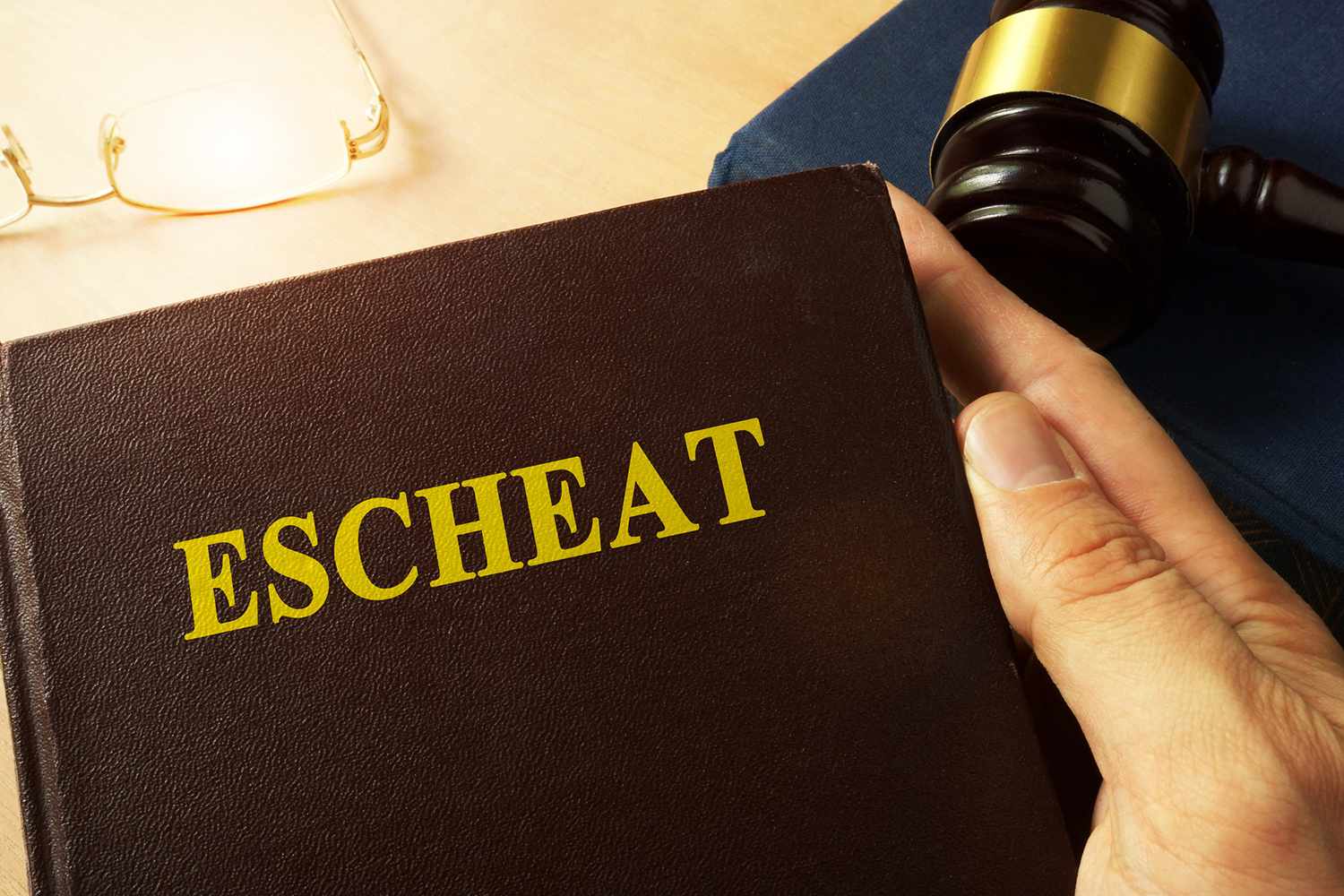
- 19 Sep 2025
In News:
The Supreme Court of India has recently ruled that a State Government cannot invoke the Doctrine of Escheat under Section 29 of the Hindu Succession Act, 1956, when a valid Will has been executed and probate has been granted by a competent court. The judgment underscores that the principle of escheat applies only as a last resort, when an individual dies intestate (without a Will) and without legal heirs.
What is the Doctrine of Escheat?
The Doctrine of Escheat is a long-standing legal principle ensuring that no property remains ownerless. When a person dies without a Will and without any legal heirs, ownership of the property reverts to the State.
This doctrine safeguards social and legal order, ensuring that property does not remain unclaimed or misused.
Situations Covered Under Escheat:
- Death without a Will (Intestate): When a person dies without making a valid Will and leaves no heirs.
- Unclaimed or Abandoned Property: When ownership cannot be established for a prolonged period.
The underlying idea is that property must always have an identifiable owner, and in the absence of heirs, the State becomes the ultimate owner.
Historical Background
- The term “escheat” originates from the Old French word “eschete”, meaning “to fall to.”
- The concept dates back to the feudal system of medieval Europe, where land held by a tenant reverted to the lord if the tenant died without an heir or was convicted of crimes such as treason.
- Over time, this right passed from feudal lords to the monarch or the state, ensuring continuous control over land and preventing property from becoming ownerless.
Doctrine of Escheat in Modern Legal Systems
In contemporary jurisprudence, escheat prevents property from remaining in legal limbo. The State assumes ownership of such assets, either permanently or temporarily, until legitimate claimants are found.
Different countries have codified laws governing this process, ensuring fairness and transparency.
Doctrine of Escheat in India
In the Indian legal framework, the doctrine operates through two main provisions:
- Article 296 of the Constitution of India:Provides that any property that escheats or lacks legal ownership vests in the State or Union, depending on where the property is situated.
- Section 29 of the Hindu Succession Act, 1956:States that if a Hindu dies intestate and without any legal heirs, the property escheats to the Government, which assumes ownership subject to all legal obligations.
Supreme Court’s Observation
In the recent judgment, the Supreme Court held that:
- The Doctrine of Escheat is a remedy of last resort and cannot be invoked when a valid Will exists.
- Once a Will is probated (i.e., validated by a competent court), the State has no locus to challenge the testamentary disposition under the garb of escheat.
- The testator’s intent must prevail, and the property should devolve strictly as per the terms of the Will.
This ruling reinforces the sanctity of testamentary freedom and clarifies the limited applicability of escheat provisions.
Significance of the Ruling
- Protects Individual Property Rights: Upholds the right of individuals to dispose of their property through a valid Will.
- Limits State Overreach: Prevents arbitrary claims by the State over private property.
- Clarifies Legal Interpretation: Defines the precise scope of Section 29 of the Hindu Succession Act and Article 296 of the Constitution.
- Ensures Legal Certainty: Strengthens property succession jurisprudence in India.
India’s Support for the Two-State Solution and UN Resolution on Palestine
- 18 Sep 2025
In News:
- India has reaffirmed its principled support for the peaceful resolution of the Israeli-Palestinian conflict by voting in favour of the United Nations General Assembly resolution endorsing the ‘New York Declaration’.
- The resolution, introduced by France, was adopted with 142 votes in favour, 10 against, and 12 abstentions. Countries opposing the resolution included the United States, Israel, Argentina, and Hungary.
- The declaration seeks collective international action to end hostilities in Gaza and to establish a just, lasting settlement through the effective implementation of the two-state solution. It explicitly calls on Israeli leadership to publicly commit to a sovereign and viable Palestinian state.
India’s Historical Stand on Palestine
India has consistently maintained a supportive stance toward Palestine. It was the first non-Arab country to recognize the Palestine Liberation Organization (PLO) in 1974 and formally recognized the State of Palestine in 1988. Over the years, India has voted in favour of multiple Palestinian resolutions at the UN, underlining its long-standing commitment to Palestinian statehood and sovereignty.
India’s support encompasses:
- Two-State Solution: Advocating peaceful coexistence of Israel and Palestine within secure, internationally recognized borders.
- East Jerusalem: Supporting its recognition as the capital of Palestine in line with UN resolutions.
- International Engagement: Supporting Palestine’s participation in global forums, including UNESCO and the UNGA observer state status (2012).
- Development Cooperation: Providing assistance worth approximately US$ 141 million for Palestinian projects, including contributions through the India-Brazil-South Africa (IBSA) Fund, which financed projects worth US$ 5 million.
India–Israel Relations and Strategic Balance
While maintaining historical support for Palestine, India has also nurtured a robust strategic partnership with Israel in defence, agriculture, innovation, and technology over the past three decades. This dual approach reflects India’s commitment to principled support for Palestine alongside a pragmatic partnership with Israel, balancing regional interests and global diplomacy.
India’s Advocacy at the UN
At multilateral forums, India has consistently emphasized:
- Rejection of violence and terrorism from both parties.
- Humanitarian assistance for civilians in Gaza.
- Diplomatic, peaceful resolution through dialogue and international cooperation.
High-level visits further reinforce India’s engagement: Prime Minister Narendra Modi visited Palestine in 2018, marking the first visit by an Indian Prime Minister, while former President Pranab Mukherjee visited in 2015.
Conclusion
India’s position on the Israeli-Palestinian conflict exemplifies a realist yet principled foreign policy. It underscores:
- Commitment to international law and the two-state solution.
- Balancing historical support for Palestine with deepening strategic relations with Israel.
- Advocating humanitarian aid, dialogue, and peaceful settlement as the cornerstone for regional stability.
India’s vote in favour of the UN resolution reaffirms its role as a responsible global actor promoting peace, justice, and sustainable development in West Asia.
Dongsha Islands
- 18 Sep 2025
In News:
Taiwan’s Coast Guard Administration (CGA) recently repelled both a Chinese coast guard ship and a Chinese fishing boat near the Dongsha Islands (Pratas Islands), highlighting escalating tensions in the South China Sea and the strategic significance of the region.
Key Highlights:
These confrontations coincided with China’s announcement of a national nature reserve at Scarborough Shoal, a territory also claimed by Taiwan and the Philippines. While Beijing described it as a conservation initiative, analysts view it as part of China’s broader strategy to assert control over disputed areas.
Taiwan condemned the repeated incursions, labeling them “grey zone tactics”—persistent, low-intensity actions aimed at exerting pressure without provoking direct military conflict. The CGA reaffirmed its commitment to defend Taiwan’s sovereignty, pledging ongoing patrols and surveillance in the Dongsha region.
About the Dongsha Islands:
- Located in the northern South China Sea, ~445 km southwest of Kaohsiung, Taiwan, and 320 km southeast of Hong Kong.
- Governed by Taiwan and staffed by marines, with no permanent civilian residents.
- Comprised of three formations: Dongsha Island (above sea level) and Northern and Southern Vereker atolls (below sea level).
- Circular coral atoll structure: reef flats span 24 km in diameter, enclosing a 16 km lagoon; Dongsha Island itself is ~1.6 km long and 0.8 km wide.
The incidents underscore the fragile security balance in the South China Sea, where overlapping territorial claims, strategic maritime routes, and China’s assertive posture pose ongoing regional challenges. Taiwan’s proactive coastal defense measures reflect its determination to safeguard administered territories.
Revisiting the Right to Information (RTI) in the Age of Data Protection

- 16 Sep 2025
In News:
The recent amendment to the Right to Information (RTI) Act, 2005 through the Digital Personal Data Protection (DPDP) Act, 2023 has sparked an intense debate on the balance between citizens’ right to information and the right to privacy. Critics argue that the change could transform India’s celebrated transparency law into a “Right to Deny Information”, undermining democratic accountability.
Evolution and Purpose of the RTI Act
- Enacted in 2005, the RTI Act is one of India’s most significant democratic reforms, aimed at promoting transparency, accountability, and citizen empowerment. It gives citizens the legal right to access information from public authorities, including government ministries, departments, and publicly funded organizations.
- Under the Act, public authorities are required to respond within 30 days to RTI requests. It also imposes penalties on officials who fail to provide information without valid reasons. Exemptions are limited to cases involving national security, confidential investigations, or information that could endanger individuals’ safety.
- The RTI rests on a foundational democratic principle — information held by the government belongs to the people. The state is merely a custodian of this information, accountable to citizens.
Amendment Through the DPDP Act, 2023
- Earlier, Section 8(1)(j) of the RTI Act permitted the disclosure of personal information if such disclosure served a larger public interest, such as exposing corruption or verifying implementation of welfare schemes.
- The DPDP Act, 2023 amended this clause, removing the public interest override and prohibiting disclosure of personal data altogether, even if it relates to public officials, unless legally mandated. This change effectively creates a blanket exemption for “personal information,” narrowing citizens’ access to critical public records.
Government’s Rationale
The Union government defends the amendment as an attempt to harmonize two fundamental rights —
- The Right to Privacy under Article 21, recognized by the Supreme Court in Justice K.S. Puttaswamy (2017), and
- The Right to Information under Article 19(1)(a).
According to the government, Section 8(2) of the RTI Act still allows disclosure if public interest outweighs privacy concerns, maintaining an “appropriate balance.” Officials argue that the amendment merely removes redundancy and ambiguity between the RTI and DPDP frameworks.
Criticisms and Concerns
However, legal experts, activists, and journalists warn that the amendment tilts the balance heavily toward secrecy, undermining the RTI’s original spirit.
- Dilution of Transparency:Without the “public interest” clause, authorities can refuse disclosure of crucial information, limiting citizens’ ability to scrutinize governance, corruption, or misuse of power.
- Broad Definition of ‘Personal Data’:The DPDP Act defines personal data expansively, enabling arbitrary denials of RTI requests, even for information concerning public servants’ official actions, assets, or decisions.
- Threat to Democratic Oversight:The amendment risks converting RTI from a tool of empowerment into a bureaucratic shield, curbing social audits and investigative journalism.
- Conflict with RTI’s Objective:The RTI was intended to shift power from public officials to citizens. Restricting access reverses this power dynamic, eroding democratic participation and accountability.
Judicial and Institutional Perspectives
- Justice K.S. Puttaswamy (Retd.) vs Union of India (2017):The Supreme Court upheld privacy as a fundamental right but emphasized it is not absolute and must be balanced with other rights, including transparency and public accountability.
- Supreme Court vs Subhash Chandra Agarwal (2019):The Court ruled that the office of the Chief Justice of India is subject to RTI and that judges’ asset declarations must be disclosed, reinforcing the primacy of public interest in promoting accountability.
- Justice A.P. Shah Committee on Privacy (2012):The expert group explicitly recommended that any privacy law should not dilute or override the RTI Act, asserting that transparency and privacy are complementary, not conflicting, principles.
Recommendations for Balance
- Narrow Definition of Personal Information:Limit exemptions only to information that genuinely compromises privacy, while allowing disclosure of public officials’ professional conduct, assets, and decisions.
- Training for Public Information Officers (PIOs):To ensure they interpret privacy clauses correctly and maintain the transparency-privacy balance.
- Strengthening Information Commissions:Empower Central and State Information Commissions with greater capacity and independence to adjudicate privacy-related disputes.
- Periodic Review:Establish a parliamentary oversight committee to review the impact of privacy laws on the RTI regime.
Nepal’s First Woman Prime Minister
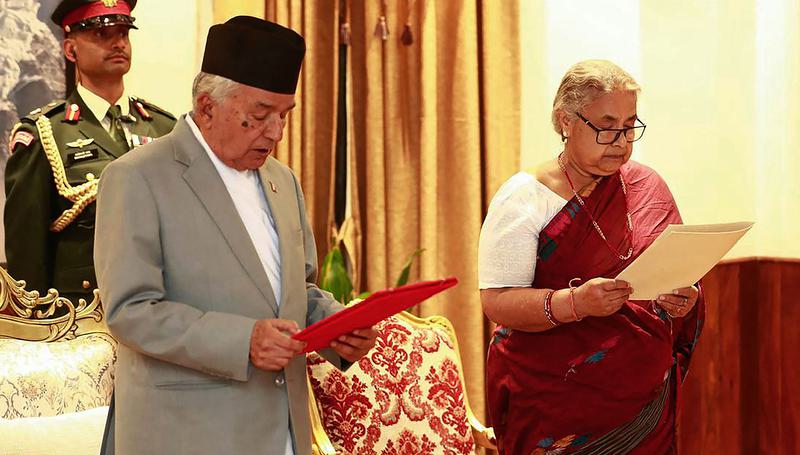
- 16 Sep 2025
In News:
Nepal has entered a crucial phase of political transition with the appointment of Sushila Karki, former Chief Justice and now the country’s first woman Prime Minister. President Ram Chandra Poudel administered the oath of office after dissolving Parliament and announcing fresh elections for March 5, 2026, marking a historic moment in Nepal’s democratic evolution.
Background: Political Turmoil and Gen Z-Led Movement
The decision came amid widespread Gen Z-led protests against former Prime Minister K.P. Sharma Oli, whose administration was accused of corruption, authoritarianism, and a social media ban that triggered nationwide unrest.
Facing pressure from the streets, the military, and constitutional experts, President Poudel dissolved the House and endorsed Karki’s appointment — a move described as a “remedial measure” during a political crisis. The protests, dominated by youth and digital activists, reflected a broader demand for accountability, transparency, and generational change in Nepal’s governance.
Sushila Karki: A Symbol of Integrity and Democratic Renewal
Aged 73, Sushila Karki is widely regarded as an upright and anti-corruption crusader. She holds a Master’s degree in Political Science from Banaras Hindu University and a Law degree from Tribhuvan University. As Nepal’s first female Chief Justice (2016–17), she was known for her fearless stance against corruption and political interference in the judiciary.
Her appointment as interim Prime Minister is supported by protesters, the Army, and civil society, who view her as a neutral and reformist leader capable of restoring trust in institutions. Her immediate mandate includes:
- Restoring law and order and maintaining peace amid political uncertainty.
- Investigating the September 8 violence and prosecuting those responsible for civilian deaths and attacks on state infrastructure.
- Overseeing the 2026 general elections and ensuring a peaceful, transparent transfer of power.
- Initiating constitutional reforms to strengthen democratic accountability.
Constitutional and Institutional Context
Although some questioned the legality of appointing a non-political figure as Prime Minister following Parliament’s dissolution, constitutional experts assert the decision falls within emergency democratic legitimacy, given the scale of the crisis. The Nepal Army played a stabilizing role throughout the unrest, mediating between the President’s Office and the protesters to ensure an orderly transition.
India–Nepal Relations: Context and Continuity
India welcomed Karki’s appointment, emphasizing stability, peace, and partnership under the ‘Neighbourhood First’ Policy. Nepal’s political stability is vital for India due to geostrategic, cultural, and economic interlinkages.
1. Geopolitical Significance:Nepal shares borders with five Indian states — Sikkim, West Bengal, Bihar, Uttar Pradesh, and Uttarakhand. Situated between India and China, it holds strategic importance in South Asian geopolitics.
2. Defence& Security Cooperation:India and Nepal share deep military ties, including the long-standing tradition of conferring honorary ranks on each other’s Army Chiefs. The Gorkha Regiment further symbolizes this enduring relationship based on mutual respect and trust.
3. Economic and Developmental Partnership:India remains Nepal’s largest trade and investment partner, accounting for over 64% of its trade and 33.5% of total FDI (USD 670 million). Bilateral trade stood at USD 8.85 billion in FY 2022–23, with India importing surplus electricity from Nepal.
India also provides 1,500+ scholarships annually under ITEC and other programs, supporting Nepal’s human resource development.
4. Cultural and People-to-People Ties:The countries share civilizational and religious linkages, exemplified by sites like Pashupatinath Temple (Kathmandu), Janakpur (birthplace of Sita), and Bodh Gaya (India). Over 8 million Nepalis live and work in India, deepening cross-border social integration.
India–Mauritius Relations
- 15 Sep 2025
In News:
- India and Mauritius share a unique relationship anchored in history, culture, and strategic convergence in the Indian Ocean Region (IOR). The visit of Mauritius Prime Minister Navinchandra Ramgoolam to Varanasi in 2025 marked a new milestone, with India announcing a USD 680 million Special Economic Package.
- The package seeks to strengthen bilateral cooperation in infrastructure, defence, maritime security, and cultural ties, while reinforcing India’s role as a key development and security partner in the region.
Key Features of the Special Economic Package (2025)
- Infrastructure Development: At least 10 projects, including completion of the new Air Traffic Control (ATC) tower at SSR International Airport, expansion of highways and ring roads, and the development of Motorway M4.
- Healthcare & Education: Establishment of new schools and hospitals.
- Maritime Cooperation: Redevelopment of Port Louis into a stronger maritime hub, and agreements on hydrography for joint surveys and navigation charts of Mauritius’ Exclusive Economic Zone (EEZ).
- Chagos Archipelago Engagement: In-principle agreement for joint surveillance of the Chagos Marine Protected Area, where the Diego Garcia base (operated by the US-UK) is located. India strongly backed Mauritius’ sovereignty claims, consistent with its support for decolonisation.
- Trade Facilitation: Bilateral trade in local currencies to be enabled, following the launch of UPI and RuPay cards in Mauritius.
- Security Partnership: India reaffirmed its role as Mauritius’ “first responder” and “net security provider” in the Indian Ocean, providing hydrographic support, refitting Mauritius Coast Guard ships, and training personnel.
Historical and Cultural Ties
- Migration: Indian migration to Mauritius began under French rule (1700s) and intensified during British rule post-1834, when nearly 500,000 indentured labourers arrived, most of whom settled permanently.
- Demographics: Today, about 70% of Mauritius’s population (1.2 million) is of Indian origin, strengthening cultural and familial bonds.
- National Day: Mauritius celebrates its National Day on March 12, coinciding with Mahatma Gandhi’s Dandi March, reflecting its deep-rooted civilizational connect with India.
Economic and Commercial Relations
- Trade: In FY 2022–23, bilateral trade stood at USD 554.19 million, with Indian exports at USD 462.69 million.
- FDI: Mauritius remains a significant investor in India—second-largest source of FDI (FY 2023–24) after Singapore.
- CECPA (2021): The Comprehensive Economic Cooperation and Partnership Agreement was India’s first trade agreement with an African country, expanding market access in goods, services, and investment.
- DTAA (1982): While the Double Taxation Avoidance Agreement facilitated investments, it also raised concerns of misuse for money laundering and round-tripping.
Defence and Security Cooperation
- India is Mauritius’ preferred defence partner, supplying platforms like Dornier aircraft and Advanced Light Helicopters (Dhruv), along with a USD 100 million Line of Credit for defence procurement.
- Joint patrolling, hydrographic surveys, and capacity building highlight the depth of security ties.
- The Agaléga Island Projects (airstrip and jetty, inaugurated in 2024) enhance maritime domain awareness and India’s strategic reach in the southwest Indian Ocean.
Strategic Significance of Mauritius for India
- Geopolitical Location: Mauritius, located 800 km east of Madagascar, is a crucial node for maritime security and trade in the Indian Ocean.
- Countering China: China’s growing influence, marked by its 2021 FTA with Mauritius under the Belt and Road Initiative (BRI), necessitates stronger India–Mauritius collaboration.
- Blue Economy: Mauritius’ EEZ expansion (post-treaty with the UK over Chagos) provides new opportunities in fisheries, offshore energy, and maritime resources, where India is a preferred partner.
- Regional Cooperation: Mauritius is active in the Indian Ocean Rim Association (IORA), aligning with India’s SAGAR vision—“Security and Growth for All in the Region”—and Vision MAHASAGAR.
Doctrine of Contributory Negligence
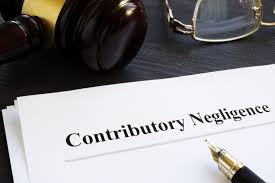
- 15 Sep 2025
In News:
The Andhra Pradesh High Court has recently clarified that the doctrine of contributory negligence cannot be invoked as a defence in criminal prosecutions. It held that a person driving rashly and negligently, causing death, will be held liable under Section 304A of the Indian Penal Code (IPC), even if the victim was partly negligent. This landmark ruling reinforces the distinction between civil liability for damages and criminal liability for offences.
Doctrine of Contributory Negligence: Concept
- Contributory negligence rests on the principle that every individual must exercise reasonable care for their own safety.
- If an injured party’s negligence contributes to the harm, they may be considered partly responsible.
- The doctrine stems from the legal maxim “Volenti non fit injuria” — one who consents to risk cannot later claim damages.
- Example: If a pedestrian crosses the road carelessly and is hit by a rash driver, the pedestrian’s conduct may reduce their claim for compensation in civil law.
Civil Law vs. Criminal Law Application
- Civil Law:
- Contributory negligence acts as a defence, reducing damages payable by the defendant.
- Indian courts often apply the principle of comparative negligence, apportioning liability based on the degree of fault of each party.
- Burden of proof lies on the defendant to show that the plaintiff’s negligence contributed to the harm.
- Criminal Law:
- The AP High Court clarified that contributory negligence is not a defence to criminal liability.
- Section 304A IPC punishes causing death by rash or negligent act, irrespective of victim’s conduct.
- Even if the victim was negligent, the accused cannot escape responsibility if their rashness directly caused the death.
Judicial Reasoning and Precedent
- Criminal liability is premised on breach of legal duty and societal responsibility, not merely individual claims of fairness.
- If contributory negligence were allowed as a defence in criminal law, it could dilute accountability and weaken deterrence against rash driving.
- By upholding strict liability under Section 304A IPC, the court reinforced that public safety outweighs individual contributory fault.
Indian Legal Position
- India does not have a codified statute on contributory negligence; instead, principles are derived from common law and judicial interpretation.
- In civil cases, courts exercise discretion to distribute damages fairly.
- In criminal prosecutions, however, the focus remains on the offender’s culpability, not the victim’s carelessness.
Significance of the Ruling
- Public Safety: Strengthens accountability for rash driving and negligent acts, a major cause of road fatalities in India.
- Doctrinal Clarity: Clearly separates the scope of contributory negligence in civil law from its inapplicability in criminal law.
- Victim-Centric Approach: Ensures justice is not denied to victims’ families on grounds of partial fault.
- Judicial Consistency: Aligns with the principle that criminal law serves deterrence and social protection, unlike civil law which primarily compensates.
Five Years of Blue Revolution 2.0
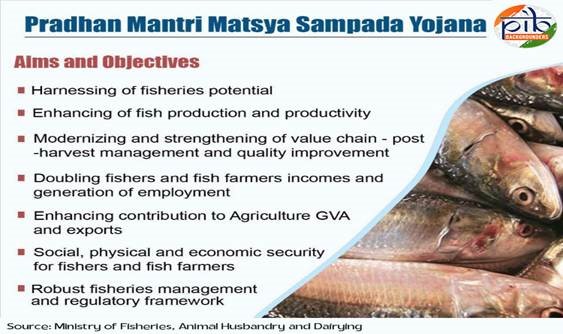
- 14 Sep 2025
In News:
India’s fisheries sector has been a key driver of food security, livelihoods, and exports. The Blue Revolution (2015) enhanced fish production and modernized infrastructure but left gaps in post-harvest management, market access, fisher welfare, and sustainability.
To bridge these, the government launched the Pradhan Mantri MatsyaSampada Yojana (PMMSY) in September 2020, with an investment of ?20,050 crore. It sought to make the sector ecologically sustainable, economically viable, and socially inclusive. The scheme has now been extended up to 2025–26.
Objectives
PMMSY aims to:
- Harness fisheries potential in a sustainable, equitable, and responsible manner.
- Enhance fish production, diversification, and efficient use of land and water.
- Strengthen value chains through modernized post-harvest infrastructure and quality improvements.
- Double incomes of fishers and generate large-scale employment.
- Enhance contribution to Agriculture GVA and exports.
- Provide social, physical, and economic security for fishers.
- Establish a robust fisheries management and regulatory framework.
The scheme functions through two components:
- Central Sector Scheme (CS): Fully funded by the Centre.
- Centrally Sponsored Scheme (CSS): Cost-sharing with states, further divided into beneficiary and non-beneficiary oriented activities.
Milestones and Achievements
In its first five years, PMMSY has significantly reshaped India’s fisheries sector:
- Production: Fish output rose from 141.64 lakh tonnes (2019–20) to a record 195 lakh tonnes in 2024–25, making India the second-largest fish producer globally (8% of world production).
- Exports: Grew from ?46,662 crore (2019–20) to ?60,524 crore (2023–24), strengthening India’s global seafood footprint.
- Livelihoods: Created nearly 58 lakh jobs and supported 99,018 women beneficiaries, with up to 60% subsidy support for women entrepreneurs.
- Technology adoption: Supported 52,058 reservoir cages, 22,057 RAS &Biofloc units, 1,525 sea cages, and raceways, making aquaculture more productive and climate-resilient.
- Post-harvest infrastructure: Approved projects worth over ?3,281 crore for 58 fishing harbours, 734 cold storages, 21 wholesale fish markets, 192 retail markets, 6,410 kiosks, and digital fish trade platforms.
- Community resilience: Declared 100 Climate Resilient Coastal Fishermen Villages and promoted sustainable technologies like Biofloc, which reduces water use and boosts productivity.
Supplementary Initiatives
- Pradhan Mantri MatsyaKisanSamridhiSah Yojana (PM-MKSSY): Launched in 2024 as a central sub-scheme with an outlay of ?6,000 crore (2023–27). Focuses on formalisation, aquaculture insurance, value chain efficiency, and quality assurance.
- National Fisheries Digital Platform (NFDP): Introduced in 2024 to digitise the sector, provide work-based digital identities, enhance credit access, ensure traceability, and integrate cooperatives. By September 2025, it had 2.7 million registrations.
Challenges
- Climate stress: Rising sea temperatures and extreme weather threaten coastal ecosystems.
- Infrastructure gaps: Cold storage and transport remain inadequate in remote areas.
- Overfishing: Risks depletion of marine resources.
- Limited reach: Many small-scale fishers lack awareness and access to formal schemes.
Scarborough Shoal Dispute
- 14 Sep 2025
In News:
The Scarborough Shoal, a triangular atoll in the South China Sea, has once again become a flashpoint after China announced the establishment of a 3,524-hectare nature reserve in the disputed waters. The move has drawn strong protests from the Philippines, which claims sovereignty over the feature and views China’s step as an assertion of jurisdiction under the guise of ecological protection.
Geographical and Strategic Significance
- The shoal is located about 220 km west of the Philippines’ Luzon Island and falls well within Manila’s 200-nautical mile Exclusive Economic Zone (EEZ) under the 1982 UN Convention on the Law of the Sea (UNCLOS).
- Claimed by both China (which calls it Huangyan Island) and the Philippines (locally known as Panatag Shoal or Bajo de Masinloc), sovereignty over the shoal remains unsettled.
- Its location near major global shipping lanes that carry over $3 trillion worth of trade annually enhances its geostrategic value.
- The lagoon and surrounding waters are rich in fish stocks, shellfish, and sea cucumbers, making it a vital fishing ground for regional communities.
Historical and Legal Context
- China’s claim: Traced back to maps from the Yuan Dynasty (1200s), Beijing argues historical sovereignty.
- Philippines’ claim: Based on proximity, falling within its EEZ, and backed by the 2016 Permanent Court of Arbitration (PCA) ruling under UNCLOS, which invalidated China’s “nine-dash line” claim. The ruling, however, did not adjudicate on sovereignty but recognized the shoal as a traditional fishing ground for multiple nations.
- Control: China seized effective control of the shoal in 2012 after a naval standoff and has since maintained coast guard and fishing militia presence, often intercepting Filipino vessels.
China’s Nature Reserve Plan
- China has approved a marine protected area to conserve the coral reef ecosystem of the shoal.
- Chinese officials argue it reflects improved “jurisdiction and governance” and claim Filipino fishermen are responsible for overfishing and pollution.
- Critics, however, view the reserve as a political instrument to strengthen Chinese control and potentially restrict access to Filipino fishermen under the pretext of conservation.
- The Philippines has accused China of coral destruction and giant clam harvesting, raising the possibility of fresh international arbitration on environmental grounds.
Regional and Global Reactions
- Philippines: Strongly protested the move, viewing it as a violation of its sovereign rights. President Ferdinand Marcos Jr. has leveraged the issue domestically while deepening ties with the United States.
- United States: Condemned the reserve plan as “destabilising and coercive.” Under the 1951 Mutual Defence Treaty, Washington has pledged to defend the Philippines against armed attacks, including those occurring “anywhere in the South China Sea.”
- Risk of escalation: Recent incidents—such as the use of water cannons, ramming of boats, and close aerial encounters—underline the danger of miscalculation, though both sides avoid direct combat to prevent escalation.
- Expert views: Chinese analysts frame the reserve as ecological protection, while Philippine experts argue it is a strategic tool to consolidate Beijing’s de facto control and marginalize other claimants.
Implications
- For the Philippines:
- Raises questions about maritime security and economic livelihood of fishermen.
- Strengthens its reliance on the U.S. alliance for deterrence.
- For China:
- Enhances its long-term maritime footprint and jurisdictional claims.
- Risks further international pushback, reinforcing perceptions of coercion.
- For International Order:
- Challenges the enforcement of UNCLOS and undermines multilateral dispute settlement mechanisms.
- Escalates tensions in one of the world’s busiest waterways with direct implications for global trade.
Fast Track Immigration-Trusted TravellerProgramme
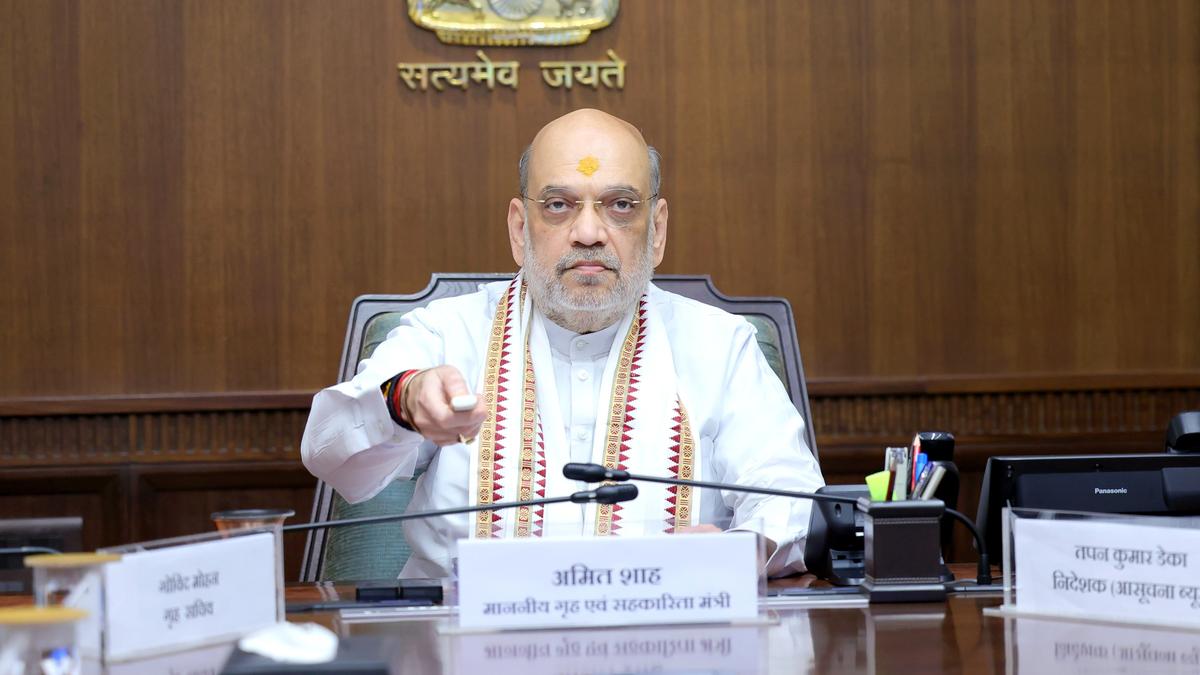
- 13 Sep 2025
In News:
- The Union Home Minister recently launched the Fast Track Immigration – Trusted TravellerProgramme (FTI-TTP) at five additional airports — Lucknow, Thiruvananthapuram, Tiruchirappalli, Kozhikode, and Amritsar — further expanding its coverage across the country.
- The initiative aims to provide seamless, secure, and faster immigration clearance for Indian citizens and Overseas Citizen of India (OCI) cardholders.
Background and Coverage
- Launch: First introduced at Delhi’s Indira Gandhi International (IGI) Airport in 2024.
- Latest Expansion: Now operational at 13 airports nationwide.
- Nodal Agency: Implemented by the Bureau of Immigration (BoI) under the Ministry of Home Affairs (MHA).
Objectives
- To reduce waiting time at immigration counters.
- To enhance international mobility of Indian citizens and OCI cardholders.
- To ensure convenient yet secure border management using digital technology.
Enrollment and Process
- Online Registration: Applicants must apply via the official portal https://ftittp.mha.gov.in, providing personal details and uploading documents.
- Biometric Capture: Collected either at Foreigners Regional Registration Offices (FRROs) or at the airport.
- Immigration Process at e-Gates:
- Boarding pass scan to fetch flight details.
- Passport scan for identity verification.
- Biometric authentication (fingerprint/face scan).
- Automated clearance — the e-gate opens within 30 seconds, eliminating the need for manual checks.
- Validity: Enrollment remains valid until the passport expires or for five years, whichever is earlier, with provision for renewal.
Significance
- Cuts down long queues at airports, reducing clearance time to under 30 seconds.
- Aligns with India’s vision of Digital Governance and Smart Borders.
- Enhances traveller experience, particularly for frequent international flyers.
- Strengthens security protocols through biometric and digital verification.
National Forest Martyrs Day 2025
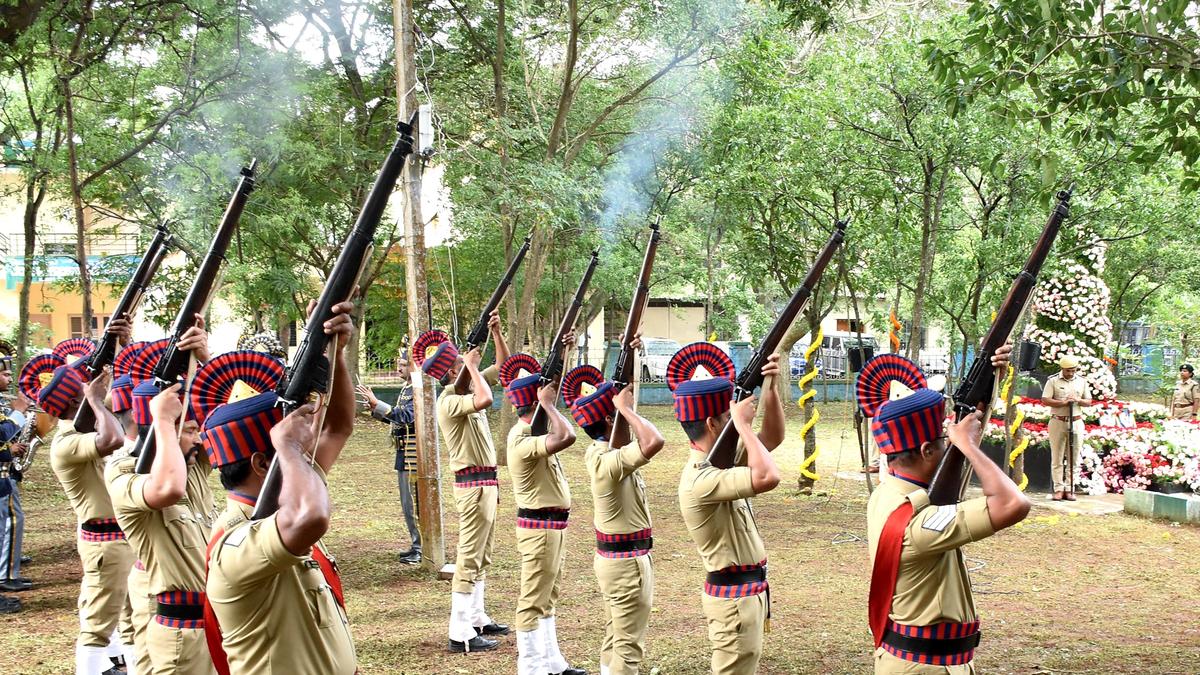
- 13 Sep 2025
In News:
- National Forest Martyrs Day is observed annually on September 11 to pay tribute to forest officials, personnel, and community members who have sacrificed their lives while protecting India’s forests and wildlife.
- The day recognizes the risks undertaken in the line of duty against threats like illegal logging, poaching, encroachment, and forest fires.
Historical Background
- The observance is rooted in the Khejarli Massacre of 1730 in present-day Rajasthan. When Maharaja Abhai Singh of Marwar ordered the felling of Khejri trees for palace construction, the Bishnoi community, led by Amrita Devi Bishnoi, resisted by embracing the trees. In the brutal crackdown, 363 villagers lost their lives to protect their sacred groves.
- This legacy later inspired environmental movements such as the Chipko Movement (1970s), reinforcing India’s tradition of community-led conservation. Recognizing this historic sacrifice, the Ministry of Environment, Forest and Climate Change (MoEFCC) officially declared September 11 as National Forest Martyrs Day in 2013.
Significance
- Commemoration of Sacrifice: The day honours not only the Bishnoi martyrs but also countless forest personnel who have died in the line of duty.
- Environmental Awareness: Highlights the critical role of forests in climate regulation, biodiversity conservation, and ecosystem services like air and water purification.
- Community Involvement: Encourages local communities to uphold traditions of eco-conscious living.
- Policy Emphasis: Reinforces the need for stronger laws and protection mechanisms for natural resources and frontline forest staff.
Observance
The day is marked through:
- Memorial ceremonies in forest departments.
- Tree plantation drives to promote ecological restoration.
- Awareness campaigns and educational programmes in schools and communities.
- Community participation to spread the message of sustainable living and conservation.
All India Debt and Investment Survey (AIDIS) and Situation Assessment Survey (SAS) of Agricultural Households (2026–27)
- 13 Sep 2025
In News:
- The National Statistics Office (NSO), under the Ministry of Statistics and Programme Implementation (MoSPI), is set to conduct two of its flagship household surveys — the All India Debt and Investment Survey (AIDIS) and the Situation Assessment Survey (SAS) of Agricultural Households — during July 2026 to June 2027.
- These surveys are part of the broader framework of the National Sample Survey (NSS), initiated in 1950, which provides critical data on consumption, employment, health, indebtedness, and welfare, forming the backbone of evidence-based policymaking in India.
All India Debt and Investment Survey (AIDIS)
- Origin and Evolution: Traces its roots to the All India Rural Credit Survey (1951-52), later expanded in 1961-62 to cover debt and investment. Since then, AIDIS has been conducted roughly once every decade, with the latest in the 77th Round (2019), at the request of the Reserve Bank of India (RBI).
- Coverage: Captures data on household indebtedness, savings, and asset ownership across rural and urban households.
- Significance:
- Inputs for national accounts and measurement of wealth distribution.
- Helps assess inequality in asset ownership and functioning of credit markets.
- Provides a crucial evidence base for the RBI, MoSPI, and financial policymakers.
Situation Assessment Survey (SAS) of Agricultural Households
- Launch and Expansion: Initiated in 2003 to examine the economic conditions of farmers, expanded in 2013 to cover all agricultural households, and further refined in the 2019 round.
- Scope of Coverage:
- Income and expenditure patterns of agricultural households.
- Indebtedness and credit access.
- Ownership of land and livestock.
- Crop and livestock production, farming practices, and adoption of technology.
- Access to government schemes, including crop insurance.
- Policy Relevance: Used extensively by the Ministry of Agriculture and Farmers Welfare, NITI Aayog, researchers, and financial institutions to frame policies for agriculture and rural development.
Sample Registration System (SRS) Statistical Report 2023
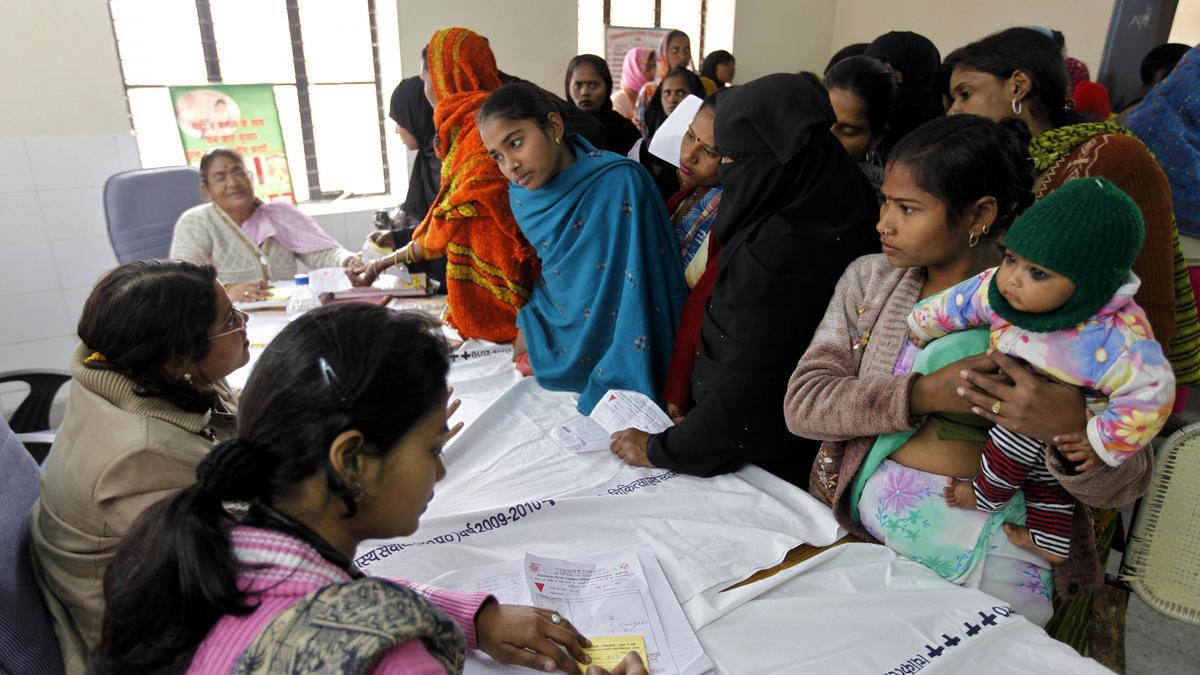
- 11 Sep 2025
In News:
The Sample Registration System (SRS) Statistical Report 2023, released by the Office of the Registrar General & Census Commissioner (ORGI), provides crucial insights into India’s demographic transition. The report highlights notable shifts in fertility, mortality, and ageing patterns, underlining both progress and challenges in population dynamics.
Key Findings of SRS 2023
1. Total Fertility Rate (TFR)
- India’s TFR declined to 1.9 in 2023, falling below the replacement level of 2.1 children per woman.
- This marks the first decline in two years, reflecting sustained fertility reduction.
- State variations:
- Highest TFR: Bihar (2.8 among larger states).
- Lowest TFR: Tamil Nadu (well below replacement).
- 18 States/UTs reported TFR below replacement level, indicating an advancing demographic transition.
2. Crude Birth Rate (CBR)
- The national CBR declined from 19.1 (2022) to 18.4 (2023).
- State-wise extremes:
- Bihar: 25.8 (highest).
- Tamil Nadu: 12 (lowest).
3. Infant Mortality Rate (IMR)
- India’s IMR touched a historic low of 25 per 1,000 live births in 2023, down significantly from 40 in 2013.
- The decline highlights improvements in maternal and child healthcare.
4. Sex Ratio at Birth (SRB): The SRB stood at 917 girls per 1,000 boys, reflecting persistent gender imbalance despite gradual improvements in many regions.
5. Ageing Population
- Seniors (aged 60+) constitute 9.7% of the population, up from 8.6% in 2011.
- State variation: Kerala leads with nearly 15% elderly population, indicating advanced population ageing.
Significance of the Trends
- Demographic Transition:The fall in fertility and birth rates confirms India’s movement towards a stabilising population, with many states already below replacement fertility.
- Public Health Gains:The sharp fall in IMR highlights the impact of government interventions in maternal health, institutional deliveries, and immunisation.
- Gender Challenges:A low SRB underscores continuing son preference and gender discrimination, raising concerns for long-term demographic balance.
- Ageing Burden:Rising share of the elderly, especially in southern states, signals the need for social security, geriatric healthcare, and pension reforms.
Particularly Vulnerable Tribal Groups (PVTGs)
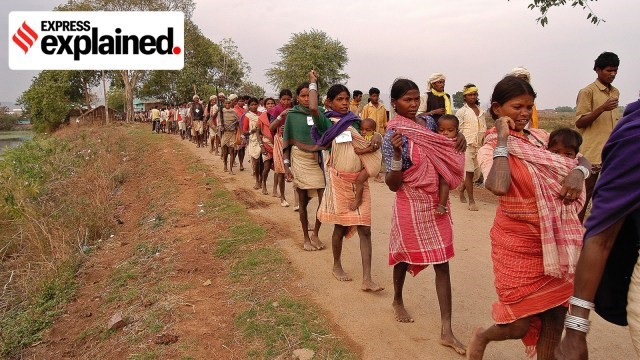
- 11 Sep 2025
In News:
- The Ministry of Tribal Affairs (MoTA) has requested the Registrar General and Census Commissioner of India (RGI) to enumerate Particularly Vulnerable Tribal Groups (PVTGs) separately in the upcoming Census.
- Aim: To capture population, households, and distinctive socio-economic and cultural features of PVTGs for better targeting of schemes such as the Pradhan Mantri Janjati Adivasi NyayMaha Abhiyan (PM JANMAN).
About PVTGs
- Definition: A sub-category of Scheduled Tribes (STs), considered the most disadvantaged among tribal communities.
- Origin: Concept recommended by the Dhebar Commission (1960–61) to address disparity within STs.
- Criteria for Identification:
- Declining/stagnant population
- Geographical isolation
- Pre-agrarian economy (hunting, gathering, shifting cultivation)
- Economic backwardness
- Low literacy
- Numbers:
- Initially 52 groups identified during the Fifth Five-Year Plan (1974–79).
- Later, 23 more groups added in 2006 → 75 PVTGs today.
- Spread: Across 18 states and the Andaman & Nicobar Islands.
Demographic Profile
- Estimated Population (2023 Survey): ~47.5 lakh PVTGs in India.
- Madhya Pradesh – 13.22 lakh (highest)
- Maharashtra – 6.7 lakh
- Andhra Pradesh – 5.18 lakh
- Smallest Groups: Sentinelese (Andaman & Nicobar Islands) with just 15 individuals.
- Largest Group: Baiga (Madhya Pradesh) – ~4.14 lakh population.
Habitat & Livelihoods
- Mostly live in remote forests, hilly regions, or islands with limited access to infrastructure.
- Livelihood sources:
- Hunting and gathering
- Shifting cultivation
- Non-Timber Forest Produce (NTFP) collection
- Livestock rearing
- Traditional artisan work
Cultural & Social Features
- Distinct cultural identities, practices, and languages.
- Often outside mainstream socio-economic and political processes.
- Many face critical health and education deficits.
Need for Separate Enumeration
- No separate count so far: PVTGs only enumerated under the general ST category; many grouped together under one nomenclature.
- Single-entry STs: Out of 75 PVTGs, 40 explicitly listed under Article 342 of the Constitution.
- Challenges: Current lists vary across states; some groups not separately listed in Census.
- Benefits of separate enumeration:
- Accurate population data for targeted schemes.
- Helps assess whether PVTG classification criteria remain relevant.
- Supports preservation of cultural identity.
- Identifies infrastructure gaps in health, education, and livelihoods.
Welfare Measures
- PM JANMAN Scheme (2023):
- Budget: ?24,104 crore.
- Coverage: More than 200 districts.
- Objective: Improve health, education, livelihoods, and basic amenities of PVTGs.
India–Singapore Comprehensive Strategic Partnership (CSP): 2025 Roadmap
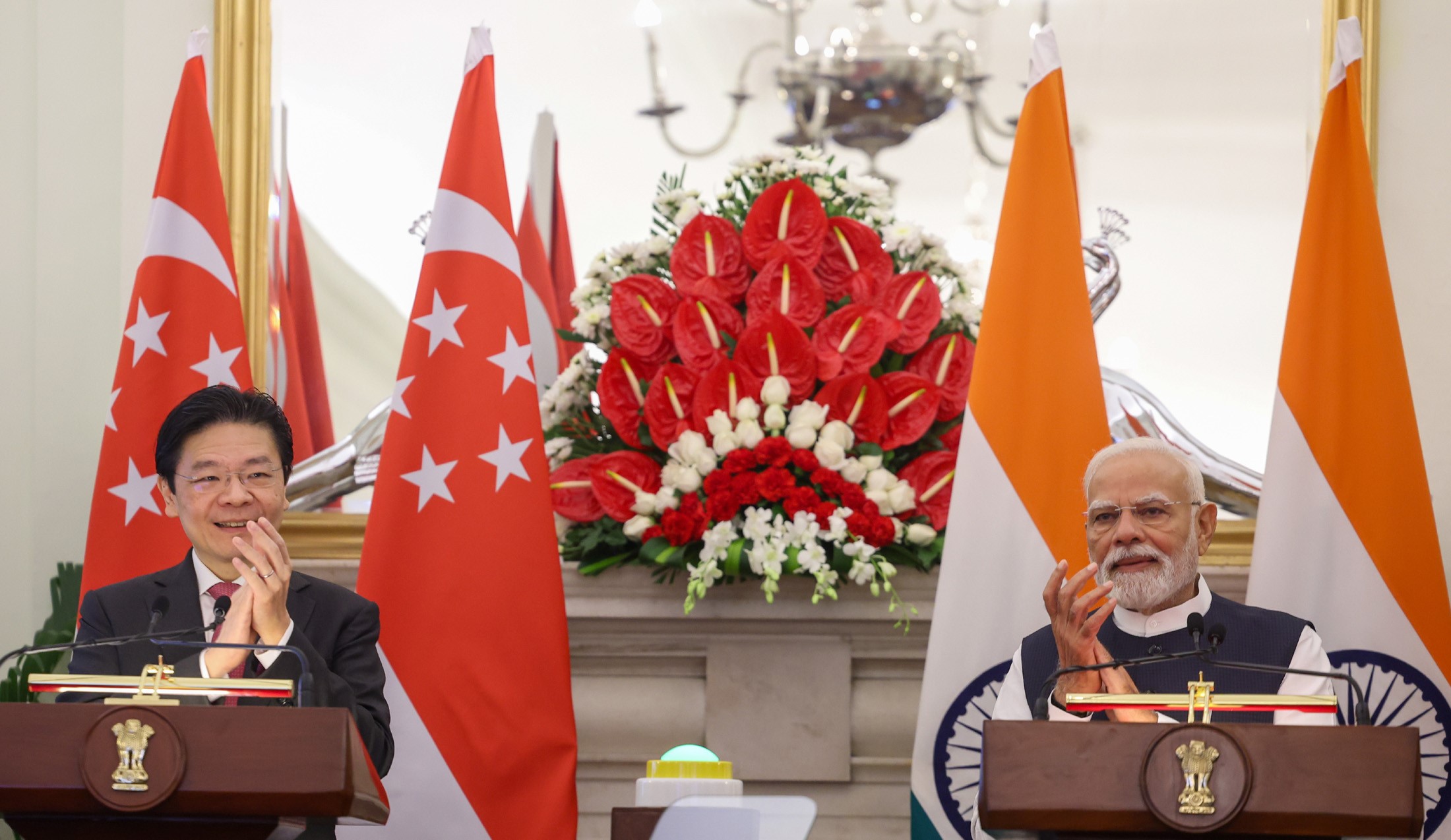
- 10 Sep 2025
In News:
The visit of Singapore Prime Minister Lawrence Wong to India in September 2025 marked 60 years of diplomatic relations and culminated in the adoption of a forward-looking Comprehensive Strategic Partnership (CSP) Roadmap. This elevates bilateral ties beyond trade to encompass technology, security, sustainability, and people-centric cooperation, reinforcing Singapore’s role as a vital partner in India’s Act East Policy and Indo-Pacific vision.
What is CSP?
- The Comprehensive Strategic Partnership (CSP) is the highest level of bilateral engagement between India and Singapore.
- It was elevated from a Strategic Partnership in 2015, and deepened further in 2025 through the adoption of a roadmap across eight key sectors.
Eight-Pillar Cooperation Framework
- Economic Cooperation
- Review of Comprehensive Economic Cooperation Agreement (CECA) and ASEAN-India Trade in Goods Agreement (AITIGA) in 2025.
- Partnership in semiconductors: Singapore produces 10% of global semiconductors and 20% of semiconductor equipment—key to India’s domestic chip manufacturing ambitions.
- Cooperation in industrial parks, sustainable manufacturing, capital market connectivity (NSE-IFSC-SGX GIFT Connect), and space collaboration.
- Skills Development
- Establishment of the National Centre of Excellence for Advanced Manufacturing in Chennai.
- Joint efforts in Technical and Vocational Education and Training (TVET), skill certification, train-the-trainers programmes, and nursing skill cooperation (expansion of the Singapore–Assam model).
- Digitalisation
- Expansion of UPI–PayNow linkage for seamless cross-border payments.
- Collaboration in fintech, cybersecurity, AI applications (healthcare, agriculture), start-up ecosystems, and adoption of TradeTrust for e-Bills of Lading in trade documentation.
- Sustainability & Green Growth
- Cooperation in green hydrogen, ammonia, and civil nuclear energy.
- Joint climate initiatives under Article 6.2 of the Paris Agreement.
- Collaboration in the International Solar Alliance (ISA) and Global Biofuels Alliance.
- Partnership in food security, agricultural exports, and water management.
- Connectivity
- Establishment of an India–Singapore Green and Digital Shipping Corridor linking major Indian ports with Singapore.
- Knowledge-sharing in aviation (air services agreement, sustainable aviation fuel, MRO collaboration).
- Healthcare & Medicine
- MoU on Health and Medicine: digital health, maternal and child health, disease surveillance, and medical R&D.
- Nursing cooperation and skills training to enhance employability in Singapore.
- People-to-People & Cultural Exchanges
- Student and professional exchanges, parliamentary engagement, think tank linkages, and public service training.
- Promotion of cultural heritage and maritime history collaborations.
- Defence& Security
- Enhanced military cooperation through SIMBEX 2025 and other tri-service exercises.
- Collaboration on defence technology (AI, automation, unmanned systems, quantum computing).
- Maritime security including submarine rescue cooperation and regional patrols.
- Strengthened counter-terrorism efforts via FATF and other multilateral mechanisms.
- Singapore acknowledged India’s interest in the Malacca Straits Patrol (MSP); India’s Andaman & Nicobar Command enhances regional maritime domain awareness.
Strategic Significance
- Positions Singapore as India’s gateway to Southeast Asia and the broader Indo-Pacific.
- Enhances regional security architecture aligned with ASEAN principles.
- Demonstrates how middle powers can address global uncertainties through technology partnerships, defence collaboration, and sustainable growth initiatives.
National Institutional Ranking Framework
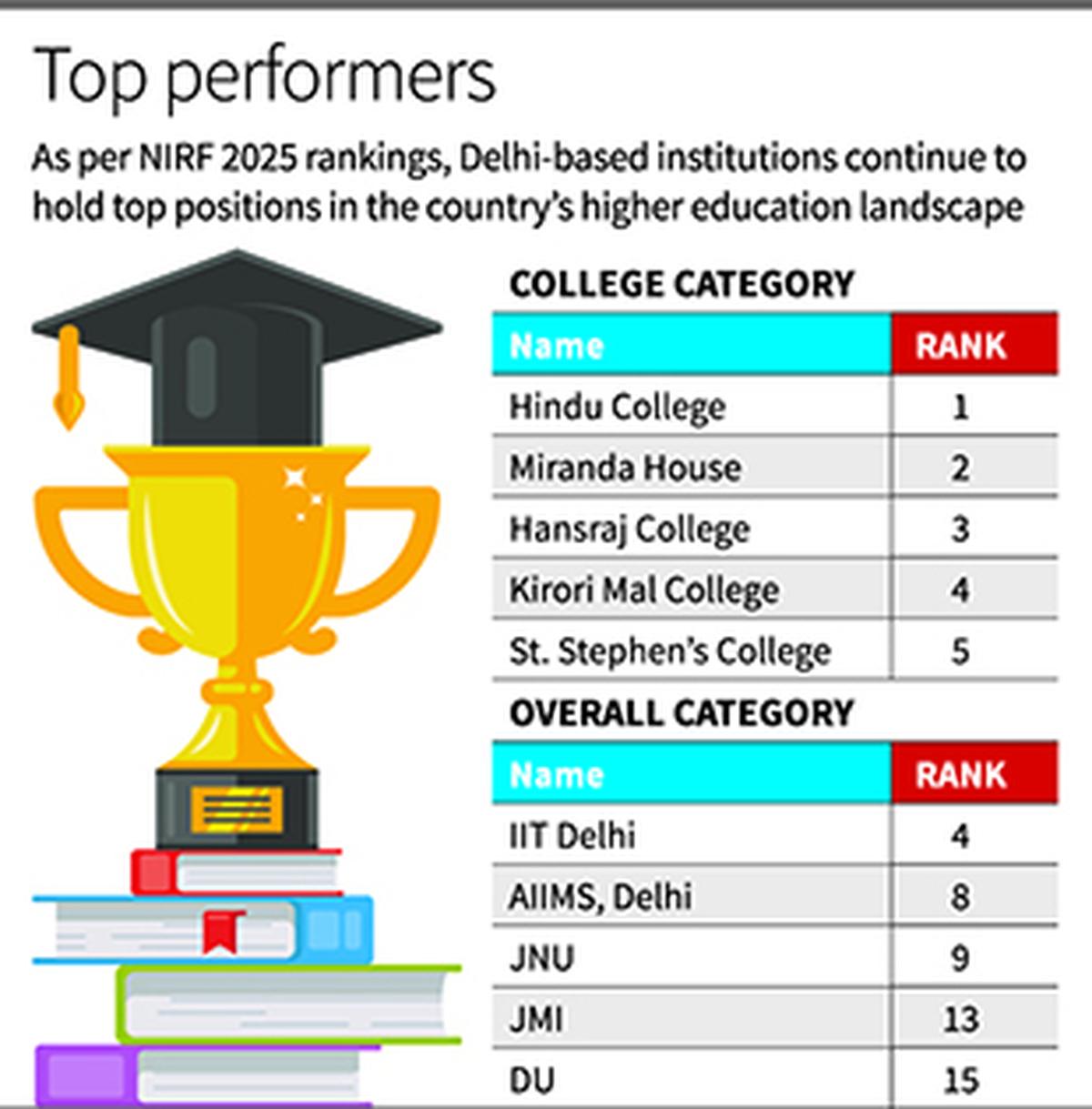
- 10 Sep 2025
In News:
The Ministry of Education has released the India Rankings 2025 under the National Institutional Ranking Framework (NIRF), first launched in 2015 to provide a transparent, data-driven methodology for ranking higher education institutions (HEIs).
Background
- Introduced in 2015 by the Ministry of Education (then MHRD).
- First rankings released in 2016 with one category (Universities) and three domains (Engineering, Management, Pharmacy).
- Now expanded to 9 categories and 8 subject domains, with SDG-based rankings introduced in 2025.
- Aim: To benchmark quality, ensure accountability, guide students/parents, and align with NEP 2020 goals of making India a knowledge superpower by 2047.
Parameters of NIRF (Weightage)
- Teaching, Learning & Resources (30%)
- Research & Professional Practice (30%)
- Graduation Outcomes (20%)
- Outreach & Inclusivity (10%)
- Perception (10%)
- Total of 19 sub-parameters used.
- Data sourced from institutions and third parties like Scopus, Web of Science, Derwent Innovation for publications, citations, and patents.
Participation & Growth
- 2025: 7,692 unique institutions applied (14,163 submissions), compared to 2,426 in 2016 – a 217% rise in participants and 297% rise in applications.
- Rankings now cover 17 categories, including overall, universities, colleges, research institutions, medical, dental, law, pharmacy, management, architecture & planning, agriculture, open universities, skill universities, state public universities, innovation, and SDGs.
Key Highlights of 2025 Rankings
- IIT Madras: Retains 1st rank in Overall category for the 7th year and Engineering for the 10th year. Also topped Innovation and SDGs categories.
- IISc Bengaluru: Ranked 1st among Universities for the 10th year; also leads in Research Institutions for the 5th year.
- IIM Ahmedabad: Topped Management for the 6th consecutive year.
- AIIMS Delhi: 1st in Medical for the 8th year; also ranked 8th in Overall. Additionally topped Dental for the first time.
- Jamia Hamdard (Delhi): 1st in Pharmacy for the 2nd year.
- IIT Roorkee: 1st in Architecture & Planning for the 5th consecutive year.
- NLSIU Bengaluru: Retains 1st position in Law for the 8th year.
- Hindu College (Delhi University): 1st among Colleges for the 2nd year, displacing Miranda House. Six of the top ten colleges are from Delhi.
- Indian Agricultural Research Institute (Delhi): 1st in Agriculture & Allied Sectors for the 3rd year.
- IGNOU (Delhi): 1st in Open Universities category for the 2nd year.
- Symbiosis Skill & Professional University (Pune): 1st in Skill Universities for the 2nd year.
- Jadavpur University (Kolkata): 1st in State Public Universities (introduced in 2024).
Significance
- NIRF has evolved into a credible national benchmark for higher education, enhancing global competitiveness, transparency, and inclusivity.
- With new categories such as Innovation, Skill Universities, and SDG rankings, it reflects India’s effort to link education with sustainability, entrepreneurship, and national development goals under NEP 2020.
- Participation trends demonstrate growing institutional acceptance of NIRF as a fair and transparent ranking mechanism.
Foreigners Tribunals
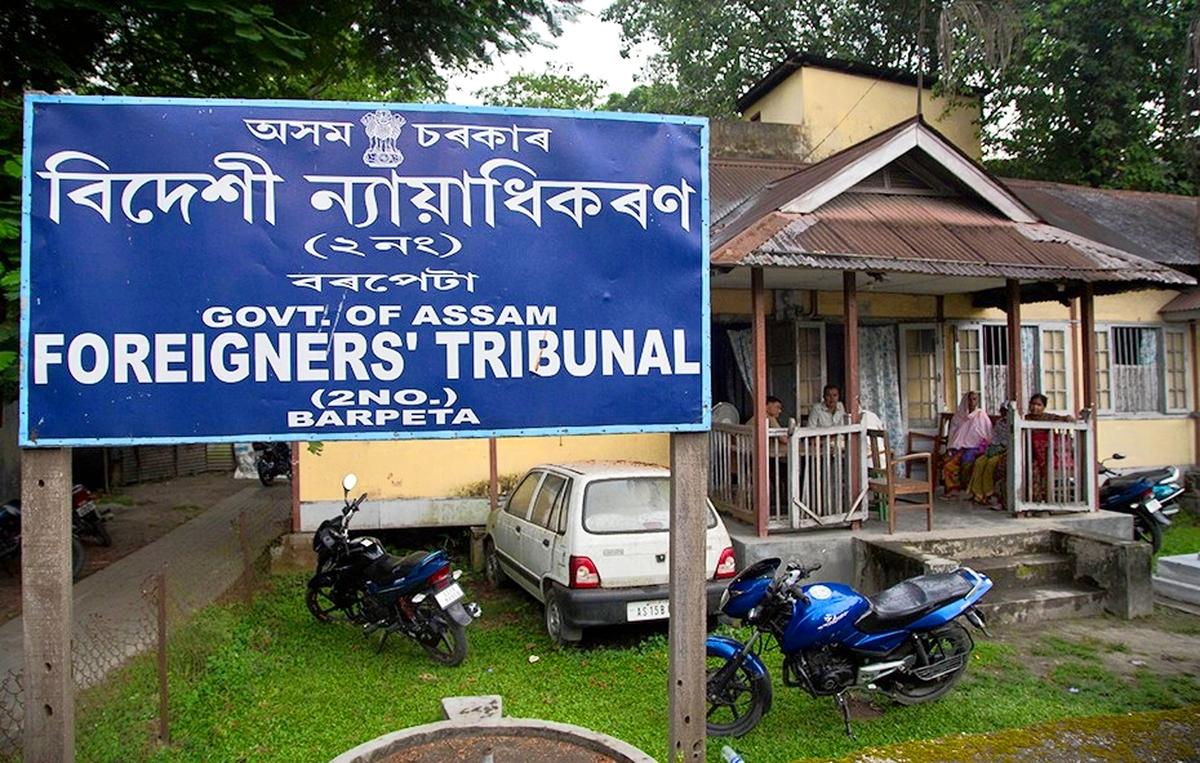
- 08 Sep 2025
In News:
The Union Home Ministry has recently empowered Foreigners Tribunals (FTs) with expanded judicial authority under the Immigration and Foreigners Act, 2025, which came into effect in September 2025. This marks a significant shift in India’s approach to dealing with suspected illegal immigrants, particularly in states like Assam.
Background
- Earlier Framework: Foreigners Tribunals were originally set up under the Foreigners (Tribunals) Order, 1964, issued under the Foreigners Act, 1946. Their main role was to determine whether a person was a foreign national.
- In Assam, such tribunals were established after the Illegal Migrants (Determination by Tribunals) Act, 1983 was struck down by the Supreme Court in 2005. Currently, around 100 FTs are functional in the state.
- Earlier, detention of declared illegal immigrants was carried out through executive orders, without direct judicial sanction.
Provisions of the 2025 Act
The Immigration and Foreigners Act, 2025 repeals older legislations and replaces the 1964 Order, giving FTs enhanced powers akin to those of a civil court and a first-class judicial magistrate.
New Powers of Foreigners Tribunals:
- Summoning and enforcing attendance of individuals and examining them under oath.
- Requiring production and verification of documents.
- Issuing commissions for the examination of witnesses.
- Directing suspects (“proceedees”) to appear in person.
- Issuing arrest warrants in case of non-appearance.
- Sending suspected or declared foreigners to detention/holding centres pending deportation.
Procedural Aspects:
- Notices are served to suspected individuals to prove their citizenship within 10 days.
- Cases are to be disposed of within 60 days of reference.
- Declared foreigners are placed in detention or transit camps until deportation.
Significance
- Strengthened Legal Framework: Brings uniformity and judicial backing to the process of identifying and detaining unauthorised foreigners.
- Due Process Assurance: Ensures quasi-judicial scrutiny before declaring an individual a foreigner.
- Regional Relevance: Particularly critical in Assam and Northeast India, which face unique challenges of cross-border migration.
- Administrative Clarity: Clearly demarcates powers between executive authorities and tribunals.
Exercise MAITREE
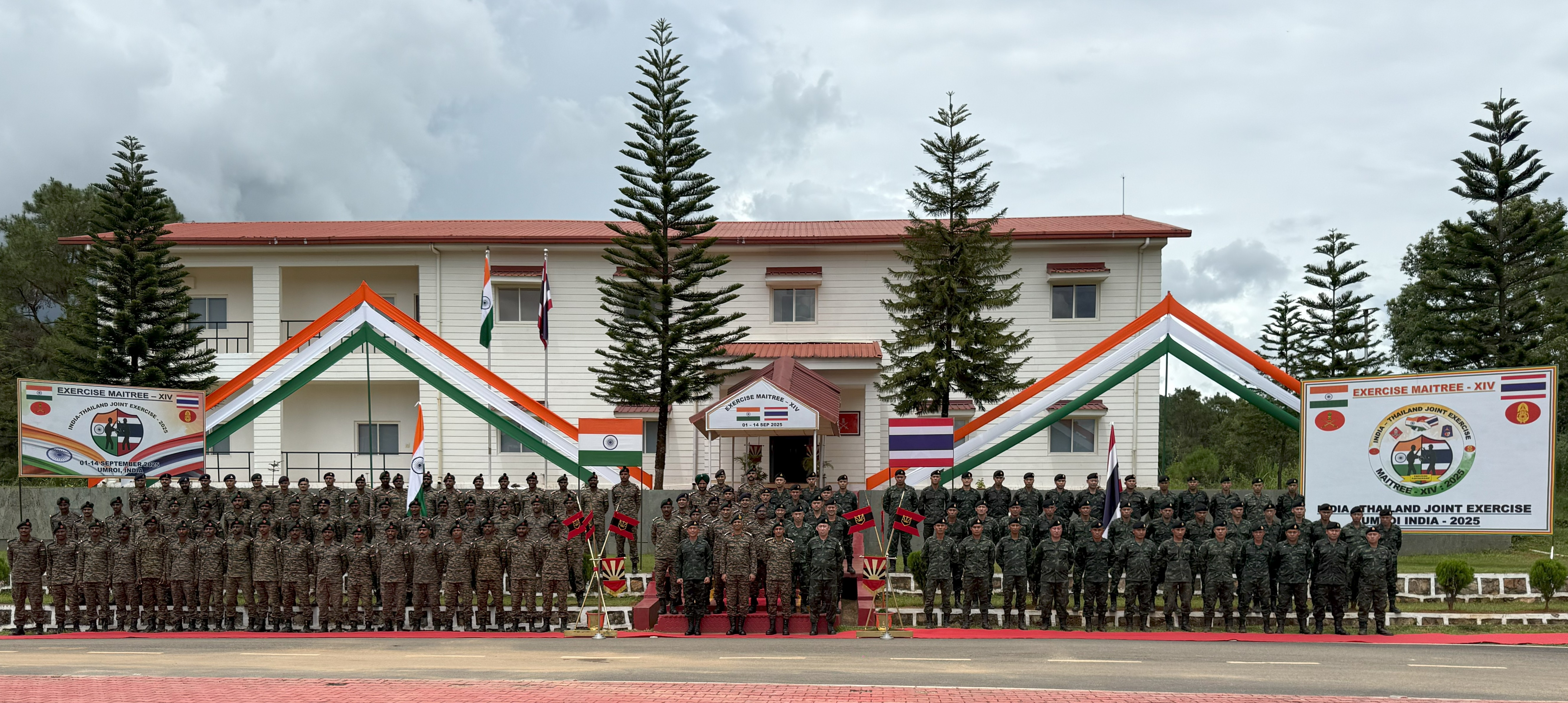
- 08 Sep 2025
In News:
The 14th edition of Exercise MAITREE-XIV, a joint military exercise between India and Thailand, commenced at the Joint Training Node (JTN), Umroi, Meghalaya.
Background
Instituted in 2006, Exercise MAITREE is a bilateral military exercise aimed at enhancing cooperation, interoperability, and mutual understanding between the Indian Army and the Royal Thai Army. The 13th edition was held at Fort Vachiraprakan, Tak Province, Thailand.
Key Features of MAITREE-XIV
- Participants:
- Indian Army – 120 personnel, represented by a battalion of the Madras Regiment.
- Royal Thai Army – 53 personnel from the 1st Infantry Battalion, 14th Infantry Brigade.
- Focus Area:
- Company-level counter-terrorist operations in semi-urban terrain, in accordance with Chapter VII of the UN Charter.
- Tactical drills, joint planning, special arms skills, physical fitness, and raiding operations.
Significance
- Reinforces bilateral defence cooperation and strengthens regional security architecture.
- Reflects the shared commitment of India and Thailand towards peace, stability, and counter-terrorism efforts.
- Enhances the operational synergy of both armies, particularly in addressing contemporary security challenges in the Indo-Pacific.
Global Peace Index (GPI) 2025
- 07 Sep 2025
In News:
The Global Peace Index (GPI) 2025, compiled by the Institute for Economics and Peace (IEP), ranked Iceland as the world’s most peaceful country, a position it has held since 2008. Covering 163 independent states and territories that represent 99.7% of the global population, the index provides a comparative measure of peace across nations.
India’s Performance
- Rank: 115th out of 163 countries.
- Score: 2.229, reflecting a 0.58% improvement over the previous year.
- Improvement Drivers: Gradual decline in domestic disputes and relative stability in societal security.
- Persistent Challenges: High militarisation, cross-border tensions, and sporadic internal unrest continue to limit India’s peacefulness score.
Global Rankings
- Top 10 Peaceful Nations (2025): Iceland, Ireland, New Zealand, Finland, Austria, Switzerland, Singapore, Portugal, Denmark, and Slovenia.
- Least Peaceful Nations: Russia, Ukraine, Sudan, Democratic Republic of Congo, and Yemen.
- Regional Highlights:
- Europe dominates the top 10 due to low crime, political stability, and strong institutions.
- South America witnessed improvements, with Argentina and Peru making notable gains.
- Sub-Saharan Africa and the Middle East remain the least peaceful, marred by civil wars, terrorism, and political instability.
Criteria of Assessment
The GPI ranks countries across 23 indicators grouped under three domains:
- Societal Safety and Security – crime rates, political stability, refugee impact.
- Ongoing Domestic and International Conflict – wars, terrorism, civil unrest.
- Militarisation – defence expenditure, arms imports/exports, armed personnel.
Global Peace Trends 2025
- The global average peacefulness has declined, primarily due to growing internal conflicts, rising militarisation, and widening geopolitical divides.
- While countries like Iceland scored consistently high due to low crime, absence of an army, and strong social trust, many regions faced setbacks with increased unrest and repression (e.g., Pakistan, Bangladesh, South Africa).
YudhAbhyasExercise
- 04 Sep 2025
In News:
Despite rising bilateral tariff tensions, India and the United States have commenced their largest-ever edition of the YudhAbhyas Army exercise at Fort Wainwright, Alaska. The two-week-long exercise underscores the strategic depth of the India–US defence partnership, even amid political and trade frictions.
About YudhAbhyas Exercise
- Nature: Annual bilateral military exercise between the Indian Army and the US Army.
- Initiation: Started in 2004 under the India–US Defence Cooperation Framework.
- Hosting: Conducted alternately in India and the US.
- Focus: Joint training in counter-terrorism, peacekeeping, mountain and high-altitude warfare.
2025 Edition Highlights
- Location: Fort Wainwright, Alaska — subarctic conditions comparable to Himalayan terrain.
- Indian Participation: Over 450 soldiers from the Madras Regiment.
- US Participation: Troops from the 5th Infantry Regiment “Bobcats”, Arctic Wolves Brigade Combat Team, 11th Airborne Division.
Training Features
- Joint heliborne operations.
- Surveillance and UAV deployment.
- Rock-craft and mountain warfare.
- Casualty evacuation and combat medical aid.
- Integrated use of artillery, aviation, and electronic warfare.
Strategic Significance
- Operational Readiness
- Enhances interoperability and coordination in extreme cold climates, vital for Himalayan and Arctic theatres.
- Strengthens joint capabilities in counter-terrorism, peace support, and disaster relief operations.
- Defence Cooperation Beyond Exercises
- The US has secured Indian defence deals worth over $25 billion since 2007.
- Recent major acquisitions:
- 99 GE-F404 turbofan engines (for Tejas Mk-1A fighters) worth $716 million.
- Proposed deal for 113 more engines worth $1 billion.
- 31 MQ-9B Predator drones worth $3.8 billion, deliveries expected in 2029–30.
- Geopolitical Context
- Exercises continue despite 50% tariffs imposed by the US on India under President Trump, straining economic ties.
- Defence cooperation remains resilient, reflecting two decades of strategic partnership.
- India balances ties with Russia and cautiously re-engages with China, maintaining its strategic autonomy.
- Quad Linkages
- Parallel planning is underway for the Malabar Naval Exercise among Quad nations (India, US, Japan, Australia) off Guam in November 2025, further deepening maritime security collaboration in the Indo-Pacific.
International Centre for Integrated Mountain Development
- 02 Sep 2025
In News:
The Hindu Kush Himalaya (HKH), spanning about 3,500 km across eight countries—Afghanistan, Bangladesh, Bhutan, China, India, Myanmar, Nepal, and Pakistan—is a global ecological and hydrological powerhouse.
Often termed the “Third Pole”, it holds the largest area of permanent ice cover outside the Arctic and Antarctic, feeding 10 major Asian river systems including the Indus, Ganga, and Brahmaputra. Despite its significance, a new report by the International Centre for Integrated Mountain Development (ICIMOD) warns that the region is tapping only 6.1% of its vast renewable energy potential, exposing vulnerabilities in the face of climate change.
About ICIMOD
- Established in 1983, headquartered in Kathmandu, Nepal.
- Intergovernmental body representing eight member countries of the HKH.
- Mission: Build and share knowledge to drive regional policy, investments, and climate-resilient development.
- Functions:
- Knowledge generation and sharing.
- Bridging science, policy, and practice.
- Providing a regional platform for sustainable mountain development.
Renewable Energy Potential in HKH
- Total hydropower potential: 882 GW.
- Of this, 635 GW lies in the trans-boundary rivers of HKH.
- Only 49% of hydropower potential is currently harnessed.
- Non-hydro potential: Nearly 3 Terawatts (solar & wind).
- Combined renewable energy potential in the region: >3.5 Terawatts.
- Current share in Total Primary Energy Supply (TPES): just 6.1%.
Country-wise Renewable Scenario
- Bhutan & Nepal: Generate 100% of electricity from renewables.
- India: Renewables contribute 23% of electricity generation.
- Others: Reliance on fossil fuels remains very high (Bangladesh 98%, Pakistan 76%, China 67%, Myanmar 51%).
- Traditional biomass use: Alarmingly high in rural areas—two-thirds of Nepal’s TPES, half of Myanmar’s, one-fourth of Bhutan’s and Pakistan’s—leading to severe air quality and health issues.
Climate Change & Energy Risks
The report highlights that climate variability is destabilising energy systems:
- Increased water variability and changing hydrological regimes reduce hydropower reliability.
- Glacial Lake Outburst Floods (GLOFs) and extreme weather events threaten nearly two-thirds of existing and planned hydropower projects.
- Infrastructure damage due to landslides, floods, and mega-floods is rising.
Policy Recommendations
- Integrate disaster risk reduction into hydropower and renewable energy projects.
- Explore “dams equivalents” like:
- Climate-resilient irrigation systems.
- On-farm water-efficient practices.
- Urban water storage solutions.
- Scaling up solar and wind power.
- Promote regional cooperation through platforms like SAARC Energy Centre and BIMSTEC Energy Ministers’ Conference.
- Attract international finance and private investment to overcome capital constraints.
- Encourage south-south collaboration, technology exchange, and joint research.
Significance for India
- India, a major HKH country, has both high renewable potential and high fossil fuel dependence.
- Regional clean energy cooperation can:
- Enhance energy security.
- Reduce import dependence.
- Create green jobs.
- Help achieve India’s Nationally Determined Contributions (NDCs) under the Paris Agreement.
Strait of Malacca
- 01 Sep 2025
In News:
India and Singapore have recently elevated their Comprehensive Strategic Partnership (CSP) by signing multiple agreements across defence, space, trade, skills, and sustainability.
A key highlight was Singapore’s support for India’s interest in joint patrolling of the Malacca Strait, one of the world’s most critical maritime chokepoints. This development has both bilateral and regional strategic implications.
The Malacca Strait: Geography and Importance
- Location: Between Sumatra (Indonesia) and Peninsular Malaysia–Thailand, linking the Andaman Sea (Indian Ocean) with the South China Sea (Pacific Ocean).
- Significance:
- One of the busiest shipping lanes globally, handling ~60% of India’s seaborne trade and nearly all its LNG imports.
- A vital energy artery for China, making it a strategic vulnerability (“Malacca Dilemma”).
- Historically named after the Malacca Sultanate (1400–1511).
Malacca Straits Patrols (MSP)
- Launched in 2004 by Indonesia, Malaysia, and Singapore; Thailand joined later.
- Aimed at curbing piracy, terrorism, and trafficking.
- Three coordinated layers:
- Sea Patrols: Regular joint naval patrolling.
- Eyes-in-the-Sky: Combined aerial surveillance.
- Intelligence Exchange Group: Real-time information sharing.
- India’s interest in joining the MSP reflects its commitment to freedom of navigation, regional stability, and maritime security.
India–Singapore Bilateral Cooperation (2025 Roadmap)
During PM Narendra Modi’s meeting with Singapore PM Lawrence Wong (2025), a roadmap was adopted identifying eight priority areas:
- Trade and Economy
- Skills Development – MoU to establish a National Centre of Excellence for Advanced Manufacturing Skilling in Chennai.
- Digitalisation& AI
- Sustainability – MoU for a Green and Digital Shipping Corridor and collaboration on green maritime fuel.
- Connectivity– Deepening maritime links.
- Healthcare & Medicine
- People-to-People and Cultural Exchanges
- Defence and Security – including space collaboration.
Key Agreements
- Space Cooperation: MoU between IN-SPACe (India) and Singapore’s Office for Space Technology and Industry for commercial and research linkages.
- Green Shipping Corridor: To promote sustainable maritime trade.
- Skill Development: Centre of Excellence for advanced manufacturing skilling.
Strategic Implications
- For India:
- Securing energy and trade routes through the Strait.
- Expanding its role in regional security architecture.
- Strengthening defence and space cooperation with ASEAN.
- For Singapore:
- Reinforces its position as a hub for maritime and digital connectivity.
- Gains from India’s manufacturing, space, and green energy initiatives.
- Regional Balance:
- Counters China’s strategic dominance in the South China Sea.
- Enhances multilateral security frameworks in the Indo-Pacific.
Lipulekh Pass

- 31 Aug 2025
In News:
India has rejected Nepal’s claims over Lipulekh Pass after the resumption of India–China trade through this border point. The issue has once again brought the strategic and political importance of the pass into focus.
Location & Geography
- Situated in the Kumaon region of Uttarakhand, near the trijunction of India, Nepal, and China.
- Altitude: ~5,334 metres (17,500 feet).
- Serves as a gateway to the higher Himalayan ranges and the Tibet Autonomous Region of China.
Historical & Trade Importance
- A traditional trade route connecting India with Tibet for centuries.
- In 1992, Lipulekh became the first Indian border post opened for official trade with China.
- Later followed by Shipki La (Himachal Pradesh, 1994) and Nathu La (Sikkim, 2006).
Religious Significance
- Forms an integral part of the Kailash Mansarovar Yatra, an important Hindu pilgrimage route to Mount Kailash and Lake Mansarovar in Tibet.
Strategic Significance
- Its geopolitical location near the trijunction makes it strategically vital for India’s border security and connectivity with Tibet.
- The dispute with Nepal underscores its sensitive nature in regional geopolitics.
Sci-Hub Ban and the ‘One Nation, One Subscription’ Scheme

- 30 Aug 2025
In News:
The Delhi High Court has ordered a ban on Sci-Hub and its mirror websites after global publishing houses filed a copyright infringement case. This decision has reignited the debate on access to academic literature in India and highlighted the relevance of the government’s One Nation, One Subscription (ONOS) initiative
About Sci-Hub
- Founded: 2011 by Alexandra Elbakyan.
- Nature: A free digital repository providing millions of research articles.
- Function: Circumvents paywalls of academic journals, allowing unrestricted access without subscriptions.
- Popularity: Widely used by students, independent researchers, and scholars, particularly in developing nations.
The Sci-Hub Case
- Litigation: Publishing giants Elsevier, Wiley, and the American Chemical Society (ACS) filed a copyright case against Sci-Hub.
- Court Ruling: The Delhi High Court found Alexandra Elbakyan guilty of contempt for violating earlier commitments.
- Directive: Internet Service Providers (ISPs) were instructed to block Sci-Hub and related mirror portals.
- Implication: While the ruling reinforced intellectual property rights, it left unanswered the critical issue of affordable access to scholarly resources in India.
One Nation, One Subscription (ONOS) Scheme
- Launch: 2024.
- Funding: ?6,000 crore allocated for the first phase (2023–26).
- Approach: Centralized negotiations with 30 publishing houses to provide access to nearly 13,000 journals.
- Coverage:
- Phase I: Public universities and research institutions.
- Phase II: Private colleges and institutes.
- Objective: To provide equitable, legal, and affordable access to global research material, reducing dependence on piracy platforms like Sci-Hub.
Super Garuda Shield 2025

- 29 Aug 2025
In News:
Indonesia, in collaboration with the United States and allied nations, has launched the annual multinational military exercise “Super Garuda Shield 2025”. Initiated in 2009 as a bilateral drill between U.S. and Indonesian forces, the exercise has expanded significantly since 2022 to include multiple Indo-Pacific and Western partners.
Features of Super Garuda Shield 2025
- Organisers: Indonesian National Armed Forces and the U.S. Indo-Pacific Command.
- Participants: Core members — Indonesia and the U.S.; Expanded members — Australia, Japan, Singapore, UK, France, Canada, Germany, Netherlands, New Zealand, Brazil, and South Korea.
- Scale: Around 6,500 troops.
- Duration & Location: 11 days, conducted in Jakarta and on Sumatra island.
- Activities: Joint combat training, interoperability drills across land, air, and maritime domains, and a combined live-fire exercise.
- Objectives:
- Enhance interoperability and combat readiness.
- Strengthen regional security cooperation.
- Uphold sovereignty, territorial integrity, and collective deterrence.
Strategic Context
The Indo-Pacific is witnessing rising tensions due to China’s growing military assertiveness, especially in the South China Sea. Indonesia has expressed concern about Chinese encroachment in its Exclusive Economic Zone (EEZ), though it continues to maintain positive economic relations with Beijing.
The U.S., meanwhile, is reinforcing an “arc of alliances” to reassure partners against coercion and status quo changes by force. Washington views the expanded Garuda Shield as a demonstration of collective resolve to uphold sovereignty and deter aggression.
China, however, has criticised the exercise, calling it an attempt to build an “Asian NATO” to contain its influence.
Indonesia’s Diplomatic Balancing
- Indonesia follows a dual-track diplomacy — avoiding overt confrontation with China while diversifying its defence partnerships with the U.S. and Western powers.
- This includes arms purchases from the U.S. and France and enhancing interoperability with multiple militaries.
- Scholars note that Indonesia’s refusal to choose sides outright reflects its strategy of defence diversification without formal alignment.
- Such an approach is seen as a key asset for Jakarta in a region marked by great power rivalry.
Significance
- For Regional Security: Strengthens multinational defence cooperation, collective deterrence, and stability in the Indo-Pacific.
- For Indonesia: Demonstrates its role as a pivotal state capable of balancing economic ties with China while engaging in security cooperation with the West.
- For the World Order: Reflects the growing salience of multilateral military exercises in managing great power competition and reinforcing the principles of sovereignty and territorial integrity.
Famine in Gaza
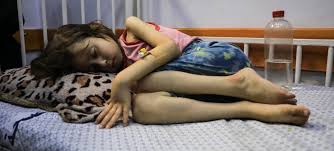
- 28 Aug 2025
In News:
The United Nations has confirmed a famine in Gaza City and surrounding areas, describing it as a “failure of humanity” and a man-made disaster. The declaration follows a report by the Integrated Food Security Phase Classification (IPC), which raised food insecurity in parts of Gaza to Phase 5, the highest level, indicating catastrophic conditions of starvation, destitution, and death.
Scale of the Crisis
- Population affected: Nearly 641,000 people are facing IPC Phase 5 conditions, while 1.14 million (58% of Gaza’s population) are projected to experience emergency-level food insecurity (IPC Phase 4) between mid-August and end of September.
- Children at risk: By June 2026, 132,000 children under five may face life-threatening malnutrition.
- Mortality: Gaza’s Hamas-run health ministry reports 271 deaths due to malnutrition, including 112 children.
- Historical Context: Since 2004, IPC has officially classified only four famines, with the last one in Sudan, 2024.
Causes
The famine is described as “starvation by design” by UN officials:
- Aid Restrictions: Israel has been accused of systematically obstructing humanitarian aid. The UN estimates 600 aid trucks per day are needed, but only 300 trucks are entering daily.
- Conflict Impact: Israel launched a military campaign in response to the Hamas attack on southern Israel in October 2023, leading to mass casualties and displacement. Over 62,000 deaths have been reported in Gaza, with more than 90% of homes damaged or destroyed.
- Infrastructure Collapse: Healthcare, water, sanitation, and hygiene systems have collapsed, exacerbating malnutrition and disease.
International Response
- UN Officials:
- Secretary-General Antonio Guterres called the famine a “moral indictment” and a man-made disaster.
- UNRWA Chief Philippe Lazzarini termed it “starvation by design”.
- UN Human Rights Chief Volker Turk attributed the famine to Israel’s unlawful restriction of aid.
- Global Condemnation:
- UK Foreign Secretary David Lammy described it as a “moral outrage”.
- Humanitarian groups and UN bodies have called for an immediate, at-scale response to prevent widespread starvation.
- Israeli Position: Israel denies a policy of starvation, claiming it has allowed 2 million tons of aid since the conflict began and continues to organize humanitarian corridors and airdrops, though the UN calls these efforts insufficient and sometimes unsafe.
NITI Aayog Report on “Rethinking Homestays: Navigating Policy Pathways”
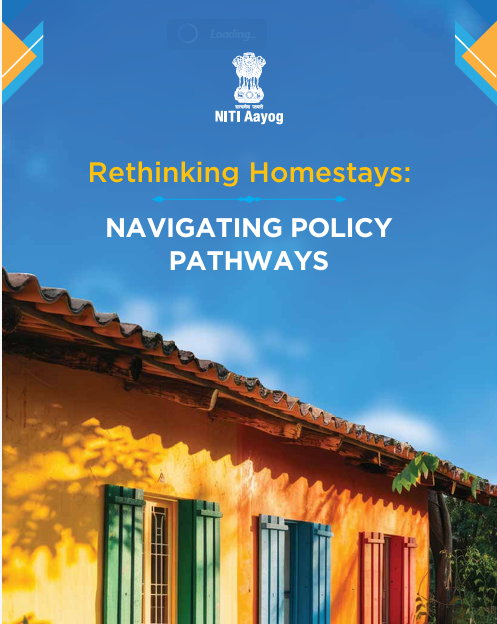
- 28 Aug 2025
In News:
NITI Aayog, in collaboration with the Internet and Mobile Association of India (IAMAI), released the report “Rethinking Homestays: Navigating Policy Pathways”. The document provides a strategic roadmap for strengthening India’s homestay and BnB sector, emphasizing its role in tourism, rural livelihoods, and cultural preservation.
Key Highlights of the Report
- Tourism & Cultural Value: Homestays offer travelers culturally immersive experiences while promoting local entrepreneurship, heritage conservation, and community participation.
- Economic Role: They serve as engines of livelihood creation, particularly in rural and semi-urban areas, fostering inclusive and sustainable growth.
- Regulatory Approach: The report calls for light-touch, transparent regulation to balance safety, consumer trust, and ease of doing business.
- Digital Integration: Strong emphasis on leveraging digital platforms for marketing, consumer engagement, and capacity building of hosts.
- Public–Private Partnerships: Collaboration with stakeholders like Airbnb, MakeMyTrip, IAMAI, ISPP, Chase India, and The Convergence Foundation was highlighted as critical for shaping a vibrant ecosystem.
- Best Practices: State-level examples from Goa, Kerala, Uttarakhand, and Uttar Pradesh showcase scalable models in policy, governance, and community-led initiatives.
- Policy Recommendations: Suggests flexible frameworks, skill development, financial access, and infrastructure support to strengthen the sector.
Significance for India
- Tourism Development – Homestays diversify India’s hospitality sector, offering authentic alternatives to conventional hotels.
- Employment Generation – Potential to create entrepreneurial opportunities for women, youth, and local communities.
- Cultural Preservation – Encourages conservation of art, craft, cuisine, and heritage while generating income.
- Rural Transformation – Helps bridge urban–rural divides by promoting community-based tourism.
- Sustainability – Supports low-impact tourism models, aligning with SDG 8 (Decent Work & Economic Growth) and SDG 11 (Sustainable Cities & Communities).
About NITI Aayog
- Established: 1 January 2015, replacing the Planning Commission.
- Chairperson: Prime Minister of India.
- Vice-Chairperson: Appointed by PM.
- Members: Full-time, part-time experts, ex-officio Union Ministers.
- Governing Council: Chief Ministers of states and LGs of UTs.
- Functions:
- Premier policy think tank for cooperative federalism.
- Provides strategic and long-term policy frameworks.
- Monitors and evaluates development programmes.
- Promotes innovation, entrepreneurship, and technology adoption.
- Coordinates between Centre, States, and global partners.
- Nature: Advisory, yet influential in shaping policies; key driver of initiatives like Aspirational Districts Programme, Atal Innovation Mission, and SDG localization.
National Tiger Conservation Authority’s Corridor Restriction
- 27 Aug 2025
In News:
The National Tiger Conservation Authority (NTCA), the apex statutory body under the Ministry of Environment, Forest and Climate Change (MoEFCC), has recently issued a clarification restricting the definition of tiger corridors to only the 32 “least cost pathways” identified in 2014 and those recorded in Tiger Conservation Plans (TCPs) of individual reserves. This excludes later studies by the Wildlife Institute of India (WII) (2016, 2021) and data from the All-India Tiger Estimation (AITE) exercises.
What are Tiger Corridors?
Tiger corridors are natural pathways that connect fragmented tiger habitats, allowing for:
- Genetic flow and long-term survival of populations.
- Migration and dispersal between reserves.
- Minimisation of human-wildlife conflict through guided movement.
Projects that require land in or around these corridors or reserves need statutory clearance from the Standing Committee of the National Board for Wildlife (SC-NBWL) under the Wildlife Protection Act, 1972.
About NTCA
- Established: 2005 (through 2006 amendment of Wildlife Protection Act, 1972).
- Chairperson: Union Minister of Environment, Forest and Climate Change.
- Functions:
- Approves TCPs of states.
- Provides financial and technical support for tiger conservation.
- Oversees Project Tiger implementation.
- Conducts All-India Tiger Estimation (AITE) every 4 years.
- Ensures ecological connectivity through corridor protection.
The Recent Controversy
- NTCA had earlier told the Bombay High Court (July 2025) that multiple benchmarks would be used to identify corridors, including:
- Protected areas with tiger occupancy.
- 2014 least-cost pathways.
- WII studies (2016, 2021).
- AITE distribution data.
- However, in its latest clarification, NTCA restricted corridors only to 2014 least-cost pathways and TCP records, ignoring updated scientific models.
Potential Beneficiaries
Industrial projects, particularly in Maharashtra, such as:
- Western Coalfields Limited’s Durgapur open cast mines.
- Lloyds Metals & Energy’s Surajgarh iron ore mines in Gadchiroli.
Scientific Concerns
- 2014 NTCA Report itself noted that its corridors were “minimal requirement” and alternative connectivities also needed conservation.
- Newer studies (e.g., Circuitscape modelling, 2025) suggest at least 192 corridors across 10 central Indian states, far beyond the restricted 32.
- Narrowing protection risks fragmentation of habitats, reducing gene flow and increasing chances of local extinctions.
RBI Discussion Paper on Inflation Targeting
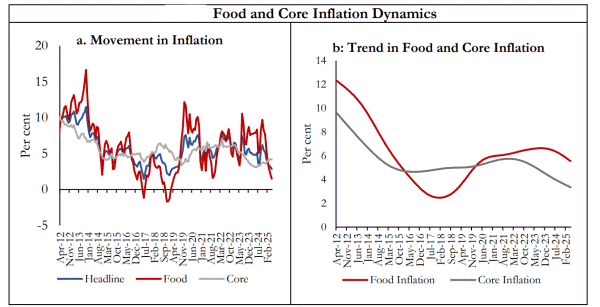
- 27 Aug 2025
In News:
The Reserve Bank of India (RBI), in August 2025, released its discussion paper on reviewing India’s Flexible Inflation Targeting (FIT) framework, which is due for renewal in March 2026. The paper seeks public feedback on key questions such as whether the 4% target remains optimal, whether the 2–6% tolerance band should be revised, and whether the target should be expressed as a point or only a range.
Evolution of the Framework
- Adopted in 2016, the FIT framework formalised inflation targeting in India.
- Current mandate: 4% CPI-based inflation target with a tolerance band of 2–6%, jointly set by the RBI and the Government of India.
- Review cycle: Every five years, with the next mandate to begin April 2026.
Rationale for Retaining the 4% Target
- Credibility with Investors: Raising the target above 4% could be perceived as policy dilution, eroding credibility. Rating agencies like S&P Global recently upgraded India’s rating (BBB), citing the RBI’s strong inflation management.
- Institutional Stability: The framework has strengthened the Monetary Policy Committee (MPC) process and fiscal discipline.
- Domestic Outcomes: Headline CPI inflation has mostly remained within the 2–6% band. In July 2025, it hit 1.55%, the second-lowest since the series began.
- External Balance: Low and stable inflation safeguards the rupee, maintains external competitiveness, and prevents capital outflows.
Headline vs Core Inflation Debate
- Economic Survey 2023–24: Suggested targeting core inflation (excluding food and fuel) as food inflation is largely supply-driven and beyond monetary control.
- RBI’s View: Headline CPI should remain the target, as persistent food shocks spill over into wages, rents, and production costs, influencing core inflation.
- Global Norm: Nearly all inflation-targeting countries focus on headline CPI; Uganda is the only exception.
- Indian Context: Food has ~50% weight in CPI. Excluding it would undermine policy relevance for households and workers.
Key Issues Under Review
- Target Level: Lowering below 4% could hurt growth; raising above 4% risks credibility loss.
- Tolerance Band: Debate on retaining the 2–6% range, narrowing it, or removing it. While a band allows flexibility, it may reduce accountability.
- Inflation Volatility: Between 2014–2025, headline CPI ranged from 1.5% to 8.6%, mainly due to food prices, while core inflation remained relatively stable.
Positive Outcomes of the Framework
- Anchored Expectations: Households and firms now base decisions around a credible 4% anchor, reducing uncertainty.
- Investor Confidence: Predictable inflation management has lowered risk premiums on Indian assets, boosting FDI and portfolio inflows.
- Improved Sovereign Ratings: Low inflation stability has supported fiscal credibility, earning global recognition.
- Resilience to Shocks: Despite global supply disruptions and oil price volatility, India avoided runaway inflation.
Mercator Projection Map
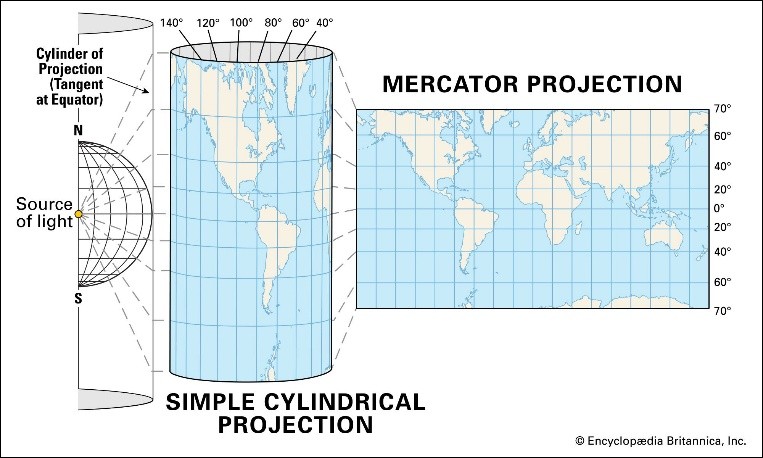
- 27 Aug 2025
In News:
The African Union (AU) has endorsed the “Correct the Map”campaign, calling for the replacement of the Mercator projection with modern alternatives that represent Africa’s true size. This move is not just cartographic—it is deeply political, tied to questions of historical justice, cultural representation, and global perception.
The Mercator Projection: Origins and Features
- Introduced: 1569 by Gerardus Mercator, a Flemish mathematician and cartographer.
- Purpose: Designed for navigation, enabling sailors to follow a straight line of constant compass bearing (Rhumb lines/loxodromes).
- Structure:
- Meridians (longitude): parallel, vertical, equally spaced.
- Parallels (latitude): horizontal, spacing increases away from the equator.
- Grid forms right angles.
- Strengths: Conformal projection that preserves shapes and angles, ideal for maritime exploration.
- Limitations: Distorts area and scale. True scale exists only along the equator; distortion grows near the poles.
Distortions and Bias
- Africa & South America appear much smaller than their real size.
- Europe, North America, and Greenland are disproportionately enlarged.
- Example: Greenland (≈2.1 million sq km) appears similar in size to Africa (≈30 million sq km).
- Such distortions fed into Eurocentric worldviews, reinforcing colonial narratives of Africa as “smaller” and “conquerable.”
Corrective Measures
- Gall-Peters Projection (1970s): Area-accurate but distorts shapes. Adopted in some schools, e.g., Boston (2017).
- Equal Earth Projection (2018): Balances shape and area, providing a fairer representation of continents.
- AU’s Endorsement: By backing the Equal Earth projection, the AU aims to restore “Africa’s rightful place on the global stage,” highlighting the continent’s true scale and importance.
National Policy to Promote Globally Important Agricultural Heritage Systems (GIAHS) in India
- 26 Aug 2025
In News:
- The Globally Important Agricultural Heritage Systems (GIAHS) programme, launched by the Food and Agriculture Organization (FAO) in 2002 at the World Summit on Sustainable Development, aims to conserve unique agricultural systems that sustain biodiversity, traditional knowledge, and rural livelihoods while adapting to modern challenges such as climate change, biodiversity loss, and community displacement.
- GIAHS adopts a multi-stakeholder approach by offering technical assistance, enhancing the value of traditional agricultural knowledge, and stimulating markets through agrotourism, product branding, and sustainable value chains.
India’s Recognised GIAHS Sites
Currently, India hosts three GIAHS sites, each reflecting diverse agro-ecological and cultural traditions:
- Koraput Region (Odisha):
- Known for subsistence paddy cultivation on highland slopes.
- Conserves a wide range of paddy landraces and farmer-developed varieties.
- Rich in medicinal plant genetic resources, closely linked with indigenous tribal knowledge.
- Supported by community seed banks, organic farming practices, and branding initiatives under state biodiversity programmes.
- Kuttanad Farming System (Kerala):
- A rare below-sea-level farming landscape.
- Comprises wetlands for paddy, garden lands for coconut and food crops, and inland water bodies for fishing and shell collection.
- Infrastructure development works under RKVY-DPR projects, such as HaritamHarippad in Alappuzha, and research on ecological utilization of water hyacinth are underway.
- Saffron Heritage of Kashmir:
- Represents a traditional agro-pastoral system of saffron cultivation.
- Characterized by organic farming practices, intercropping, and soil conservation.
- Supported through Rashtriya Krishi Vikas Yojana (RKVY) and the Mission for Integrated Development of Horticulture (MIDH) for revival and economic sustainability.
National Support Mechanisms
- Government Schemes: RKVY, MIDH, and other sectoral interventions promote conservation, branding, and livelihood opportunities.
- Biodiversity Revival: Emphasis on neglected crops and forgotten foods to ensure resilience.
- Integration with Research: State-supported projects in Kerala and Odisha enhance scientific validation and infrastructure.
Significance
- Ensures balance between conservation and socioeconomic development.
- Protects traditional knowledge systems and cultural landscapes.
- Enhances climate resilience and strengthens India’s commitment to sustainable agriculture.
- Promotes rural development, agrotourism, and niche product markets, thereby contributing to farmer incomes.
Almond Cultivation in Kashmir
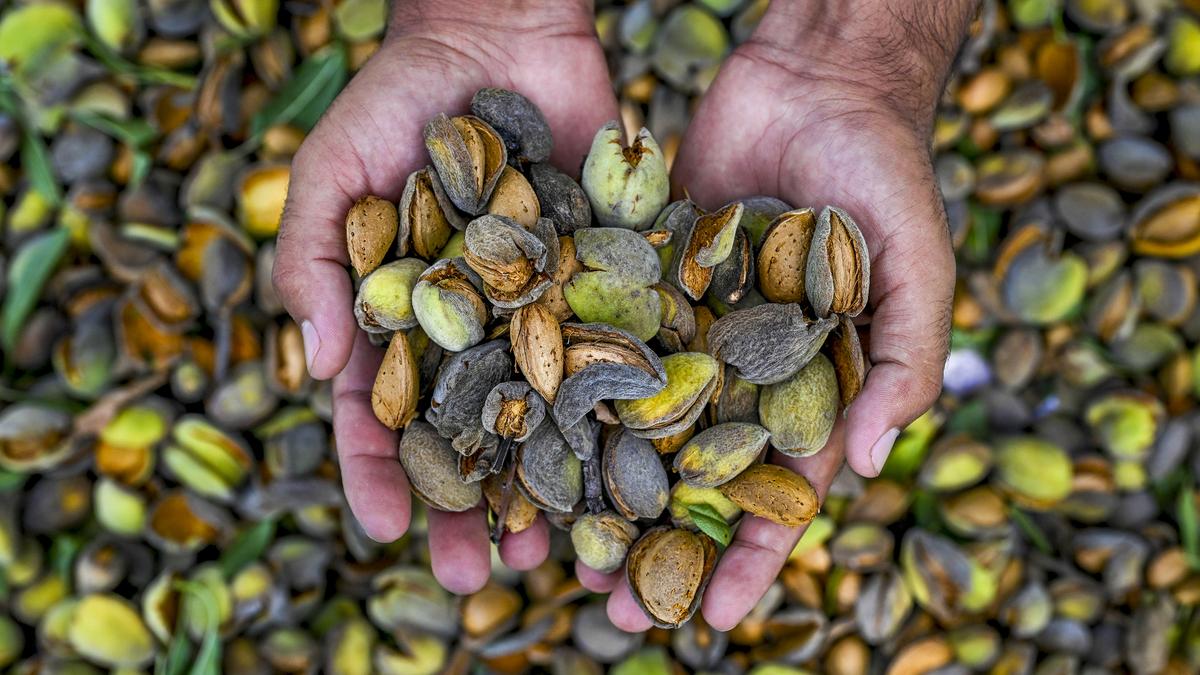
- 24 Aug 2025
In News:
The almond harvest in Kashmir is not only a vital agricultural activity but also a culturally significant seasonal event. This year’s bumper crop has brought relief and optimism to local farmers, reinforcing the economic and social importance of almond cultivation in the region.
About Almonds:
- Almonds are among the oldest and most widely cultivated tree nuts in the world, with two primary types: sweet almonds and bitter almonds.
- They are used extensively in culinary preparations, including sweets, almond milk, and as raw nuts, and are also processed for almond oil.
Climatic and Soil Requirements:
- Climate: Almond trees thrive in colder regions.
- Temperature: Optimal growth occurs between 7°C and 24°C.
- Soil: Deep, loamy, well-drained soils are ideal.
- Rainfall: Requires an average of 75–110 cm of rainfall.
- Altitude: Can grow effectively at 750–3200 meters above sea level.
Global and Indian Context:
- Major producing countries: USA, Australia, Spain, Turkey.
- In India: Almond cultivation is concentrated in hilly and colder regions, primarily in Jammu & Kashmir, Himachal Pradesh, Uttarakhand, with smaller cultivation in Kerala and some hilly areas of Andhra Pradesh.
Economic and Cultural Significance in Kashmir:
- Almond farming provides livelihoods to thousands of farmers in the region.
- The harvest season coincides with local festivals and traditional practices, reinforcing the crop’s cultural relevance.
- This year’s abundant yield has boosted local income and food security.
SarvottamYudhSeva Medals
- 24 Aug 2025
In News:
On the eve of the 79th Independence Day, President DroupadiMurmu approved the awarding of seven SarvottamYudhSeva Medals (SYSM), the nation’s highest wartime distinguished service honour, to the leaders of Operation Sindoor, marking the first such awards since the Kargil War.
About the SarvottamYudhSeva Medal:
- Institution: 26 June 1980, to recognise distinguished service of the highest order during war, conflict, or hostilities.
- Eligibility: All ranks of the Army, Navy, Air Force, including Territorial Army Units, Auxiliary and Reserve Forces, and lawfully constituted Armed Forces when embodied. Nursing officers and members of the Nursing Services are also eligible. Awards can be given posthumously.
- Design: Circular medal, 35 mm in diameter, gold gilt, with the State Emblem and inscription “SARVOTTAM YUDH SEVA MEDAL” on the obverse, and a five-pointed star on the reverse. The ribbon is golden with a red vertical stripe in the centre. Subsequent awards are recognised by a Bar on the ribbon with a miniature insignia.
- Significance: Considered the wartime equivalent of the Param VishishtSeva Medal (PVSM) for exceptional service in peacetime. Previously awarded to three officers for Kargil War leadership: Lt Gen Amarjit Singh Kalkat, Air Marshal Vinod Patney, and Lt Gen Hari Mohan Khanna.
Golden Dome Missile Defense Shield
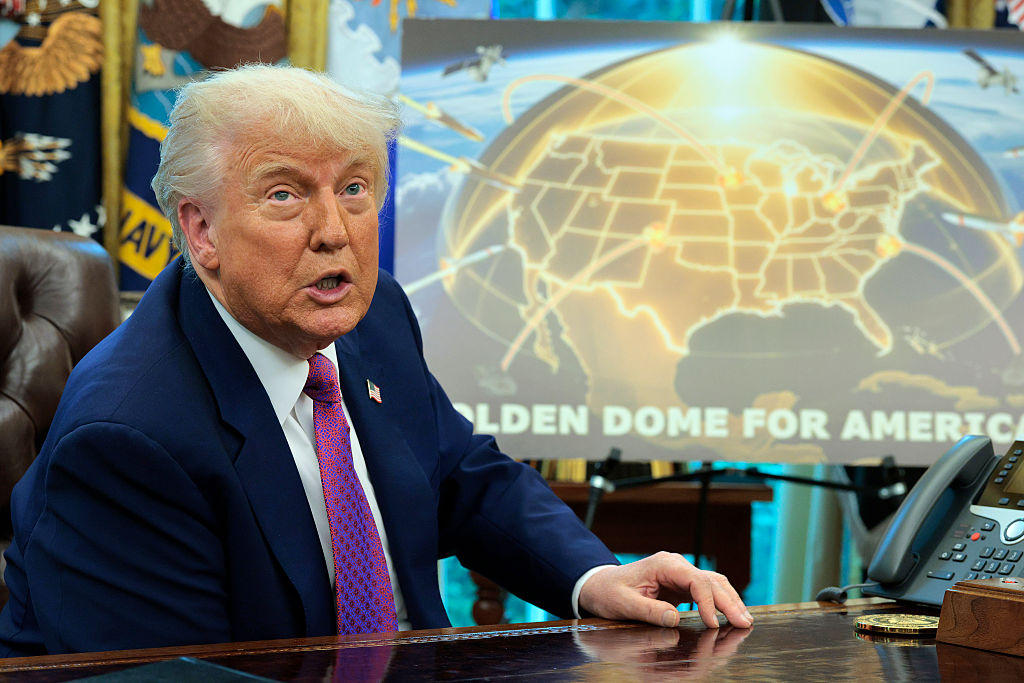
- 23 Aug 2025
In News:
The Golden Dome is a proposed ground- and space-based missile defense system of the United States, announced in 2025 with a projected outlay of $175 billion. It is designed to provide multi-layered protection against intercontinental ballistic missiles (ICBMs), hypersonic weapons, and cruise missiles from adversaries such as China, Russia, Iran, and North Korea.
Objectives
- Establish a comprehensive shield capable of intercepting hostile missiles in their boost, midcourse, and terminal phases.
- Enhance U.S. homeland security through satellite-based early warning, tracking, and interception.
- Integrate existing U.S. missile defense systems into a unified architecture.
Key Features
- Space-Based Layer
- Hundreds of satellites equipped with sensors and interceptors to detect and neutralize missiles soon after launch.
- Incorporation of laser-based systems for mid-flight interception.
- Ground-Based Layers
- Layer 2: Strengthening of the existing Ground-Based Midcourse Defense (GMD) in California and Alaska.
- Layer 3: Five new land-based launch sites (three in continental U.S., two in Hawaii and Alaska) to intercept missiles during their space trajectory.
- Layer 4: “Limited Area Defense” to protect key population centers, using radars, common launchers, and systems like Patriot, THAAD, and Aegis BMD.
- Integration with Existing Systems
- Builds upon existing U.S. missile defense infrastructure to ensure layered and redundant protection.
Comparison with Other Systems
- Israel’s Iron Dome: Golden Dome is often compared to Iron Dome, though the latter is designed for short-range rockets (4–70 km), while Golden Dome targets long-range ballistic and hypersonic threats.
- Reagan’s Strategic Defense Initiative (SDI/“Star Wars”): Golden Dome revives the 1980s concept of space-based defenses, but with advanced modern technology in satellites, sensors, and lasers.
Challenges
- Funding uncertainties: Though an initial $25 billion allocation has been proposed, political hurdles remain.
- Technological feasibility: Space-based interceptors and lasers pose significant challenges in cost, testing, and deployment.
- Strategic implications: Critics argue the system could revive debates on arms races and anti-ballistic missile treaties.
Significance
If realized, the Golden Dome would represent the most ambitious U.S. missile defense program since the Cold War, potentially altering global strategic stability by providing the U.S. with a multi-domain shield against next-generation missile threats.
Sri Lanka–India Naval Exercise (SLINEX-25)
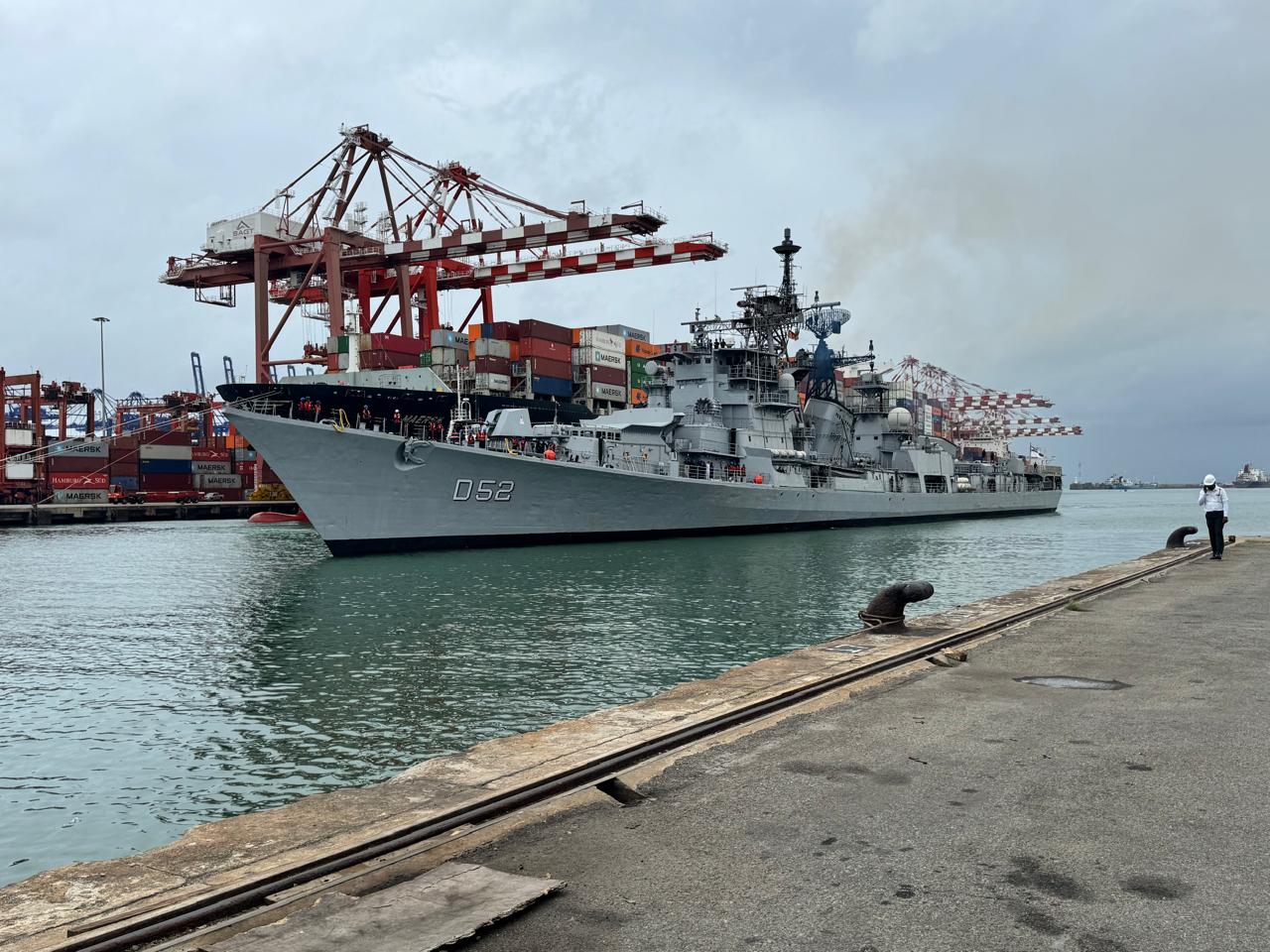
- 23 Aug 2025
In News:
The 12th edition of the Sri Lanka–India Naval Exercise (SLINEX-25)was held recently, marking another milestone in the two-decade-long maritime cooperation between India and Sri Lanka. The exercise underscores India’s commitment to strengthening regional security in line with its vision of MAHASAGAR (Mutual and Holistic Advancement for Security and Growth Across Regions).
Background
- Initiation: Conceptualised in 2005, SLINEX has emerged as a key bilateral exercise, promoting interoperability and mutual trust.
- Previous edition: Conducted at Visakhapatnam, India in December 2024.
Participants
- India: INS Rana (Guided Missile Destroyer) and INS Jyoti (Fleet Tanker).
- Sri Lanka: SLNS Gajabahu and SLNS Vijayabahu (Advanced Offshore Patrol Vessels).
- Special Forces from both navies also took part.
Structure of the Exercise
- Harbour Phase:
- Professional interactions and Subject Matter Expert Exchanges (SMEE).
- Sharing of best practices, cultural and social events, yoga sessions, and sporting activities to strengthen naval camaraderie.
- Sea Phase:Naval drills including gunnery firing, seamanship evolutions, navigation, communication protocols, fueling at sea, and Visit Board Search and Seizure (VBSS) operations.
Significance
- Enhances interoperability between the two navies for multi-faceted maritime operations.
- Facilitates capacity-building and knowledge-sharing in naval tactics.
- Deepens people-to-people and defence diplomacy ties, reinforcing maritime security in the Indian Ocean Region (IOR).
- Complements India’s broader strategic engagement under MAHASAGAR to promote cooperative security and growth in the region.
State of Food Security and Nutrition in the World 2025
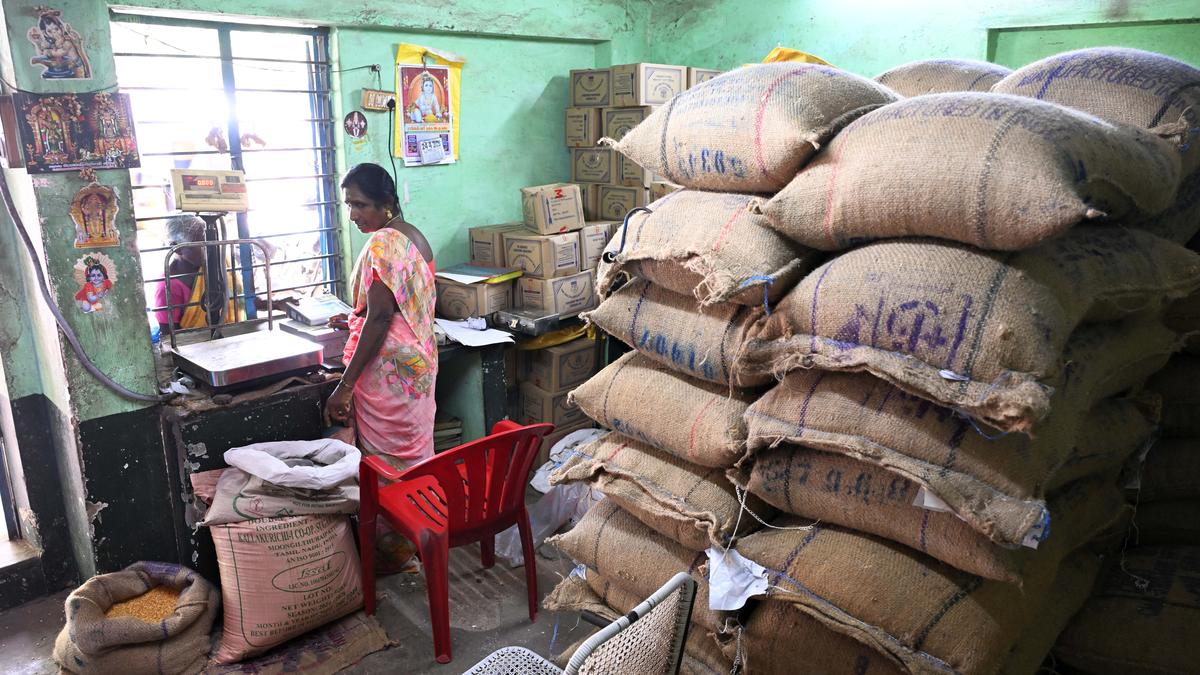
- 22 Aug 2025
In News:
According to the UN’s “State of Food Security and Nutrition in the World 2025”, global undernourishment decreased to 8.2% (673 million individuals) in 2024, down from 8.5% in 2023.
India has been instrumental in this turnaround—its prevalence of undernourishment fell from 14.3% (2020–22) to 12% (2022–24), equating to 30 million fewer hungry people. These outcomes underscore India’s unique role in advancing SDG 2: Zero Hunger globally.
Defining Hunger: Layers and Causes
- Undernourishment: Insufficient calorie intake.
- Malnutrition: Poor diet quality lacking protein and essential micronutrients.
- Hidden Hunger: Micronutrient deficiencies (iron, iodine, vitamin A, zinc).
Root Causes:
- Economic barriers: Poverty limits access to nutritious food (NITI Aayog Index: ~11.3% multidimensionally poor).
- Agricultural inefficiencies: Fragmented holdings, climate variability, poor irrigation, and 13% post-harvest losses.
- High food costs: A nutritious diet remains unaffordable for over 60% of Indians.
- Weak infrastructure: Poor cold storage and logistics aggravate food wastage.
- Health and sanitation challenges: NFHS-5 (2019–21): 35.5% of children under five are stunted; 19.3% are wasted.
- Macro-disruptions: Global conflicts, pandemics, and climate shocks affect food systems, impacting India too.
India’s Strategic Interventions: From Policies to Systems
- Public Distribution System (PDS) Reforms
- Extensive digital overhaul: Aadhaar-based targeting, biometric authentication, real-time inventory tracking, and ONORC (One Nation One Ration Card) ensuring portability and inclusion for migrants and the vulnerable.
- Served over 800 million beneficiaries during COVID-19—a monumental welfare scaling.
- Emphasis on Nutrition Over Mere Calories
- Continued unaffordability of healthy diets (60%+ can’t afford) due to price inflation and weak linkages.
- Nutrition-centric interventions:
- PM POSHAN (2021): Expanded mid-day meals into nutrition-sensitive programs.
- ICDS & POSHAN Abhiyaan: Enhanced focus on dietary diversity and maternal-child health.
- AnaemiaMukt Bharat: Tackles widespread anaemia among women and children.
- Agrifood System Transformation
- Promote nutrient-dense food affordability (pulses, fruits, vegetables, animal-source proteins).
- Address 13% food loss via upgraded cold-chain infrastructure and logistics.
- Support women-led enterprises and FPOs, especially in climate-resilient, biofortified crop cultivation.
- Digital Innovations in Agriculture: Tools such as AgriStack, e-NAM, and geospatial platforms enhance market access, planning, and transparency.
Strategies for Sustainable Impact
|
Strategy |
Actions |
|
Nutrition-centric policy shift |
Fortify staples, subsidise nutrient-rich foods (pulses, eggs, milk) |
|
Infrastructure strengthening |
Upgrade cold storage, logistics, and digital post-harvest systems |
|
Inclusive economy |
Scale women-led food enterprises, FPOs, and biofortified crop cultivation |
|
Digital expansion |
Broaden use of AgriStack, e-NAM, geospatial tools for planning & targeting |
|
Urban nutrition resilience |
Launch community kitchens, food banks, awareness drives |
|
Global sharing & leadership |
Replicate ONORC, PDS digitalisation, nutrition models in the Global South |
Overseas Citizens of India (OCI) Scheme
- 22 Aug 2025
In News:
The Ministry of Home Affairs has announced new rules for overseas citizens of India that may impact their future registration or cancellation.
Background
The Overseas Citizens of India (OCI) Scheme was launched in 2005 by the Ministry of Home Affairs (MHA) to strengthen India’s engagement with its diaspora. It provides certain residency, travel, and economic benefits to foreign nationals of Indian origin, while keeping intact India’s constitutional restrictions on dual citizenship.
Key Features of OCI
- Eligibility:
- Persons who were citizens of India on or after 26 January 1950, or their children/grandchildren/great-grandchildren.
- Excludes individuals who have ever been citizens of Pakistan or Bangladesh, and their descendants.
- Benefits:
- Visa-free travel: Lifelong, multiple-entry, multi-purpose visa to India.
- Economic & Educational Rights: Can pursue education, invest in India, and purchase property (except agricultural/plantation land).
- Ease of Residency: Long-term residency without repeated visa applications.
- Restrictions:
- No political rights (cannot vote, contest elections, or hold constitutional posts).
- No ownership of agricultural or plantation land.
New Rules Notified by MHA (2025)
The government has tightened the regulatory framework around OCI registration by amending rules under the Citizenship Act, 1955 (Section 7D).
Fresh Grounds for Cancellation
- Conviction-based: If an OCI cardholder is sentenced to imprisonment for two years or more.
- Charge-sheet-based: If charge-sheeted for an offence punishable with seven years or more.
- Applicability: These provisions apply irrespective of where the conviction or charge-sheet occurs (India or abroad), provided the offence is recognised under Indian law.
Existing Grounds (already under law)
An OCI card can also be cancelled if the person:
- Obtained registration through fraud, misrepresentation, or concealment of facts.
- Has shown disaffection towards the Indian Constitution.
- Has engaged in unlawful trade or communication with an enemy during war.
- Acts against the sovereignty, integrity, security of India, or its friendly relations with other countries/public interest.
- Within five years of registration, is sentenced to imprisonment for two years or more.
Significance of the Amendment
- Strengthens legal accountability of OCI cardholders.
- Ensures parity of standards between domestic and overseas citizens regarding serious offences.
- Reinforces national security and constitutional safeguards while maintaining diaspora ties.
Higher Education Commission of India (HECI)
- 21 Aug 2025
In News:
India’s higher education system is poised for its most significant transformation since independence with the establishment of the Higher Education Commission of India (HECI), a unified regulatory body that will replace the fragmented oversight of University Grants Commission (UGC), All India Council for Technical Education (AICTE), and National Council for Teacher Education (NCTE).
Background & Genesis
- The HECI is a proposed unified regulator intended to replace the existing oversight bodies: UGC, AICTE, and NCTE—tasked with regulating non-technical, technical, and teacher-education domains respectively.
- The concept originates from NEP 2020, which advocates for a "light but tight" regulatory framework governed by one umbrella institution with four independent verticals.
- Originally floated in a 2018 draft bill, the idea regained momentum in 2021 and is currently under drafting, with status updates as recent as July–August 2025.
Objectives & Rationale
- Streamline governance: HECI aims to eliminate overlapping jurisdictions, reduce bureaucratic delays, and improve accountability across higher education institutions.
- Enhance autonomy and innovation: Under NEP 2020’s vision, it seeks to foster institutional independence coupled with data-driven oversight.
- Align with global best practices: The vertical structure (regulation, accreditation, funding, standards) mirrors international examples like the UK's Office for Students and Australia’s TEQSA.
Structural Framework: Four Vertical Councils
As per NEP 2020, HECI will function through four independent verticals:
- National Higher Education Regulatory Council (NHERC): Responsible for regulatory oversight, excluding medical and legal education.
- National Accreditation Council (NAC): Acts as a meta-accrediting body, setting phased benchmarks and ensuring quality across institutions.
- Higher Education Grants Council (HEGC): Will manage funding based on transparent, performance-linked criteria, replacing UGC’s funding role.
- General Education Council (GEC): Tasked with developing the National Higher Education Qualification Framework (NHEQF), defining graduate learning outcomes. It will subsume the NCTE and liaise with other professional standard-setting bodies.
Some sources also mention integration of accreditation entities such as NAAC and NBA into HECI’s accreditation wing, adopting peer-review models.
Legislative Journey & Current Status
- The HECI bill is being prepared following NEP 2020, specifically underwritten by Minister Sukanta Majumdar in July 2025. A Cabinet note is anticipated before formal introduction.
- Finalisation is pending, with no clear date as of mid-2025.
Expected Benefits
- Simplified administration—one regulator instead of multiple authorities.
- Improved transparency and efficiency, eliminating redundancy.
- Promoting global standards, quality enhancements, and integration of interdisciplinary and digital learning.
Cheque Truncation System (CTS)
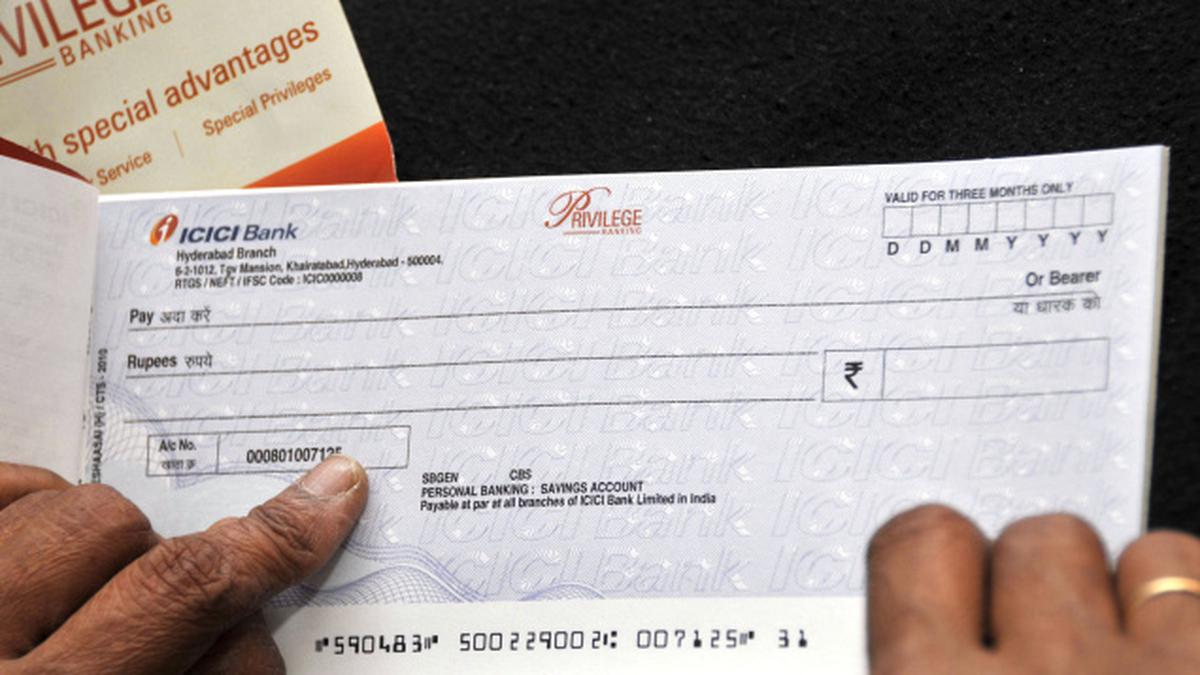
- 19 Aug 2025
In News:
The Reserve Bank of India (RBI) has announced the transition of the Cheque Truncation System (CTS) from batch processing to a continuous clearing mechanism, with settlement on realisation, to be implemented in two phases. This reform aims to further enhance efficiency, reduce delays, and strengthen the digitalisation of cheque-based transactions.
About Cheque Truncation System (CTS)
- Introduced by RBI to speed up cheque clearance and minimise physical movement of instruments.
- Process: Physical cheques are truncated at the collecting bank; only cheque images and MICR data are transmitted electronically.
- Security: Protected by a PKI-based security architecture with dual access controls, user authentication, crypto box, and smart card interfaces.
- CTS-2010 Standards: Only compliant instruments are accepted, ensuring:
- Use of specified paper quality, watermark, and invisible-ink logos.
- Mandatory minimum-security features like void pantograph.
- Standardised cheque design for uniform image-based processing.
Current vs. New System
- Current CTS: Clearing cycle takes up to two working days.
- New System (Continuous Clearing):
- Cheques will be cleared within hours of submission.
- Settlement will occur on realisation basis rather than at fixed batch intervals.
Benefits
- Faster Settlement: Realisation of cheque proceeds on the same day.
- Efficiency Gains: Reduced bottlenecks and delays in processing.
- Cost Savings: Eliminates costs linked to physical cheque movement.
- Security & Reliability: Enhanced authentication safeguards against fraud.
- Better Data Management: Easy storage and retrieval of digital records via a centralised archival system.
- Customer Convenience: Shorter clearing cycles improve banking efficiency for individuals and businesses.
18th International Olympiad on Astronomy and Astrophysics
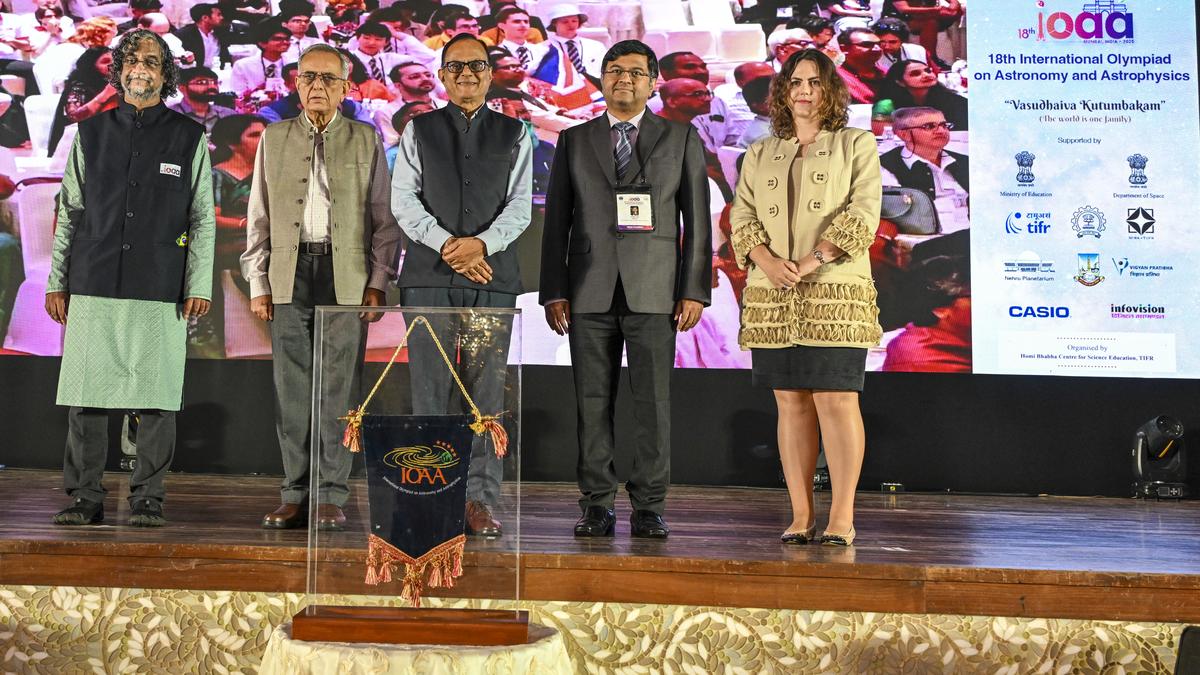
- 18 Aug 2025
In News:
India is hosting the 18th International Olympiad on Astronomy and Astrophysics (IOAA) in Mumbai, Maharashtra, with participation from over 300 young astronomers from 64 countries. The event is jointly organised by the Homi Bhabha Centre for Science Education (HBCSE), Tata Institute of Fundamental Research (TIFR), and the Union Ministry of Education.
About IOAA:
- A premier global competition for high-school students in astronomy, astrophysics, and observational sciences.
- Tests theoretical knowledge, data analysis skills, and observational abilities.
- Objectives:
- Promote scientific thinking and problem-solving in space sciences.
- Encourage international cooperation and cultural exchange.
- Inspire careers in space sciences and research.
- Showcase India’s scientific and technological progress.
Features of the 18th Edition:
- Largest-ever IOAA with record participation from 64 nations.
- Competition includes written exams, data analysis, and night-sky observations.
- Highlighting India’s legacy: From Aryabhatta’s discoveries to modern space missions like Chandrayaan-3 (historic landing near Moon’s South Pole) and Aditya-L1 (India’s first solar observatory).
- Showcasing STEM Empowerment:
- Atal Tinkering Labs benefitting over 10 million students through hands-on STEM learning.
- One Nation One Subscription scheme providing free access to global research journals for students and researchers.
- Global Collaboration: Participation in mega-science projects such as the Square Kilometre Array and LIGO-India.
Significance for India:
- Strengthens India’s global image as a leader in space sciences and STEM education.
- Provides a platform for showcasing India’s scientific achievements and educational initiatives.
- Encourages the next generation to pursue careers in astronomy, astrophysics, and research.
- Aligns with India’s broader vision of linking science, innovation, and human welfare.
Ladakh Protest: Demand for Statehood and Inclusion in Sixth Schedule
- 14 Aug 2025
In News:
In August 2025, a large protest rally was held in Kargil, led by climate activist Sonam Wangchuk and Ladakh MP Mohmad Haneefa Jan, demanding statehood for Ladakh and its inclusion under the Sixth Schedule of the Constitution. The rally marked the conclusion of a three-day hunger strike and was organized jointly by the Leh Apex Body and the Kargil Democratic Alliance (KDA).
The protesters criticized the delay in resuming dialogue by the Centre, despite the formation of a high-powered committee by the Union Home Ministry in January 2023 to address Ladakh’s concerns. Earlier discussions led to the introduction of a domicile policy with a 15-year eligibility criterion beginning from 2019.
Background
- On 5 August 2019, Article 370 was abrogated, and Jammu & Kashmir was bifurcated into two Union Territories—J&K with legislature and Ladakh without legislature.
- Since then, political groups and civil society in Ladakh have been demanding statehood for democratic representation and Sixth Schedule inclusion to safeguard land, resources, and cultural identity.
Ladakh Statehood Demand
- Objective: To grant a democratically elected legislature with full legislative powers.
- Rationale: Local representation, protection of fragile ecology, and preservation of Ladakh’s unique cultural heritage.
Sixth Schedule of the Constitution
- Constitutional Basis: Articles 244(2) and 275(1).
- Current Applicability: Assam, Meghalaya, Tripura, and Mizoram.
- Purpose: To safeguard tribal communities’ rights through Autonomous District and Regional Councils (ADCs).
Key Features
- Autonomous Councils: Elected bodies with powers over land, forests, agriculture, village administration, and social customs.
- Judicial Powers: Village councils/courts to resolve community disputes.
- Revenue & Taxation: Power to levy taxes on land, trade, and professions.
- Governor’s Role: Can alter council boundaries and approve laws.
- Financial Provisions: Grants-in-aid from the Consolidated Fund of India under Article 275(1).
- Cultural Safeguards: Protection against alienation of tribal land and exploitation by outsiders.
Significance of Demand
- Democratic Governance: Ensures political autonomy and local participation.
- Cultural Protection: Safeguards Ladakh’s Buddhist and tribal identity.
- Environmental Security: Allows better control over fragile Himalayan ecosystems.
- Strategic Importance: Strengthens governance in a border region critical for India’s national security.
Operation Falcon and Rhino Conservation in Assam
- 14 Aug 2025
In News:
The Assam government has achieved major success in protecting the greater one-horned rhinoceros through Operation Falcon, a joint initiative of the Assam Police and Forest Department launched in 2024. The operation was initiated after the killing of two rhinos prompted a shift in anti-poaching strategy.
Key Outcomes
- 42 poachers arrested across districts including Biswanath (18), Darrang (8), Nagaon (6), Karbi Anglong (5), Sonitpur (2), and one each in Udalguri, Dibrugarh, and Cachar.
- Six major poaching gangs with links to illegal trade through Myanmar dismantled.
- Nine poaching attempts foiled using digital and on-ground intelligence.
- Zero rhino killings reported in 2025 so far.
Conservation Impact
- Rhino poaching in Assam has dropped by 86% since 2016, when the BJP came to power.
- Annual data shows steady decline: one rhino killed in 2021, none in 2022, one in 2023, two in 2024, and none so far in 2025.
- Enhanced coordination, intelligence-driven operations, and rapid response mechanisms have been key factors.
About Assam’s Rhinos (Census 2022)
- Total Rhinos: 2,895 in Assam.
- Distribution:
- Kaziranga National Park & Tiger Reserve – 2,613 (largest habitat, ~1,300 sq km).
- Orang National Park & Tiger Reserve – 125.
- Pobitora Wildlife Sanctuary – 107.
- Manas National Park & Tiger Reserve – 50.
Significance of Operation Falcon
- Biodiversity Protection: Safeguards the greater one-horned rhino, listed as Vulnerable on the IUCN Red List.
- International Recognition: Strengthens India’s image in global wildlife conservation.
- Eco-Tourism Boost: Ensures safety in parks like Kaziranga, enhancing Assam’s tourism appeal.
Pfizer’s Next-Generation Vaccine
- 14 Aug 2025
In News:
- Pfizer has introduced the 20-valent pneumococcal conjugate vaccine (PCV20) for adults in India.It offers protection against 20 pneumococcal serotypes, which are responsible for most pneumococcal diseases.
About Pneumococcal Disease
- Cause: Infection by Streptococcus pneumoniae (pneumococcus), an encapsulated bacterium with a polysaccharide capsule (major virulence factor).
- Serotypes: ~90 identified worldwide; only a few cause the majority of infections.
Types of Illness
- Mild: Ear infections, sinus infections.
- Severe:
- Pneumonia
- Bloodstream infections (septicemia)
- Meningitis (CNS infection)
Public Health Burden
- Major global health concern.
- Most vulnerable groups: young children and the elderly.
- Mortality: Around 1 million child deaths annually due to pneumococcal disease.
- Transmission: Direct contact with respiratory secretions of patients or asymptomatic carriers.
Treatment and Prevention
- Treatment: Antibiotics.
- Challenge: Rapidly growing antimicrobial resistance in pneumococci.
- Prevention: Vaccination remains the most effective strategy, especially for:
- Children under 5 years
- Elderly individuals
- Immunocompromised patients
National Narcotics Helpline MANAS
- 12 Aug 2025
In News:
The Government of India launched the National Narcotics Helpline MANAS (Madak-PadarthNishedAsoochna Kendra) to strengthen citizen participation in the fight against the drug menace. The initiative, spearheaded by the Narcotics Control Bureau (NCB) under the Ministry of Home Affairs (MHA), functions as a secure, bilingual, and citizen-centric platform to enable anonymous reporting of drug trafficking, illicit cultivation, and related crimes, while also providing counselling and rehabilitation support.
Key Features of MANAS
- Helpline Number: 1933 (Toll-Free)
- Digital Access: Web portal (www.ncbmanas.gov.in), Email (info.ncbmanas@gov.in), and UMANG Mobile App
- Integration: Direct transfer to the MoSJE De-addiction Helpline (14446) for rehabilitation guidance
- Awareness Outreach: Posters, videos, contests, and citizen engagement through MyGov platform under the Drug-Free Bharat campaign
India’s Legal & Policy Framework Against Drug Abuse
- Constitutional Backing: Article 47 directs the State to prohibit intoxicating substances except for medicinal purposes.
- Legislation:
- Narcotic Drugs and Psychotropic Substances (NDPS) Act, 1985
- Prevention of Illicit Traffic in NDPS Act, 1988
- Drugs and Cosmetics Act, 1940
- International Conventions: India is party to the
- Single Convention on Narcotic Drugs, 1961 (amended 1972)
- Convention on Psychotropic Substances, 1971
- UN Convention against Illicit Traffic in Narcotic Drugs and Psychotropic Substances, 1988
- Other Initiatives: NIDAAN Portal (for drug law offenders), NashaMukt Bharat Abhiyan (community-based de-addiction programme).
Significance for Governance & Society
The MANAS helpline marks a shift from enforcement-centric approaches to a citizen-participatory, tech-enabled model. It bridges law enforcement, rehabilitation, and public awareness, reflecting India’s commitment to a balanced supply and demand reduction strategy against narcotics.
RBI’s Internal Working Group Recommendations on Liquidity Management Framework
- 11 Aug 2025
In News:
The Reserve Bank of India (RBI) recently released the recommendations of its Internal Working Group (IWG) constituted to review the Liquidity Management Framework (LMF), which has been operational since February 2020. The review seeks to enhance efficiency, transparency, and predictability in liquidity operations—crucial for ensuring smooth monetary policy transmission.
Liquidity Management Framework (LMF):
- Objective: To manage systemic liquidity and guide short-term interest rates in alignment with monetary policy objectives.
- Core Mechanism: Operates through the Liquidity Adjustment Facility (LAF)—using repo (liquidity injection) and reverse repo (liquidity absorption) operations.
- Corridor System: The policy repo rate sits at the middle of the interest rate corridor, while the Weighted Average Call Rate (WACR) serves as the operating target of monetary policy.
- Other Tools: Open Market Operations (OMO), Cash Reserve Ratio (CRR), Statutory Liquidity Ratio (SLR) for durable liquidity; and Standing Deposit Facility (SDF) for absorbing surplus liquidity.
Key Recommendations of the IWG
- WACR as Operating Target
- Recommendation: Continue using overnight WACR as the operating target.
- Rationale: WACR strongly correlates with collateralized overnight money market rates, making it reliable for transmitting policy signals across the system.
- Discontinuation of 14-day VRR/VRRR as Main Operation
- Recommendation: Replace 14-day Variable Rate Repo/Reverse Repo (VRR/VRRR) as the main liquidity management tool.
- Alternative: Manage transient liquidity primarily through 7-day repo/reverse repo operations and other operations (overnight to 14-day tenor) at RBI’s discretion.
- Rationale: 14-day auctions have witnessed lower participation, as banks prefer shorter-tenor instruments like SDF.
- Advance Notice for Liquidity Operations
- Recommendation: RBI should provide at least one-day advance notice for repo/reverse repo operations.
- Exception: Same-day operations may be undertaken in response to evolving liquidity shocks.
- Rationale: Predictability reduces market uncertainty and stabilizes money market rates.
- Variable Rate Auction Mechanism
- Recommendation: Continue using variable rate auctions for repo and reverse repo operations, including longer tenors.
- Rationale: Enhances price discovery and aligns market rates with liquidity conditions.
- Cash Reserve Ratio (CRR) Norms
- Recommendation: Continue with the 90% daily minimum maintenance requirement of CRR.
- Rationale: Ensures banks maintain sufficient reserves, preventing liquidity shortfalls.
- Durable Liquidity Tools
- Observation: Existing instruments under the LMF are sufficient to meet durable liquidity needs; no changes are required at this stage.
Key Terms:
- WACR (Weighted Average Call Rate): The average overnight interest rate at which banks borrow and lend funds, weighted by transaction volume; RBI’s operating target for monetary policy.
- Repo Rate: Rate at which RBI lends to banks against collateral to inject liquidity.
- Reverse Repo Rate: Rate at which RBI borrows from banks to absorb excess liquidity.
- VRR/VRRR: Auction-based repo/reverse repo operations, where rates are determined by market bids.
- SDF (Standing Deposit Facility): Tool for absorbing liquidity without collateral.
- CRR (Cash Reserve Ratio): Portion of deposits banks must maintain with RBI as liquid cash.
Significance of Recommendations
- For Monetary Policy: Reinforces the role of WACR in aligning short-term rates with policy stance.
- For Markets: Enhances predictability, reducing volatility in money markets.
- For Banks: Offers greater flexibility in managing short-term liquidity needs.
- For RBI: Provides operational flexibility to balance stability with market efficiency.
Tuvalu’s Planned Climate Migration to Australia
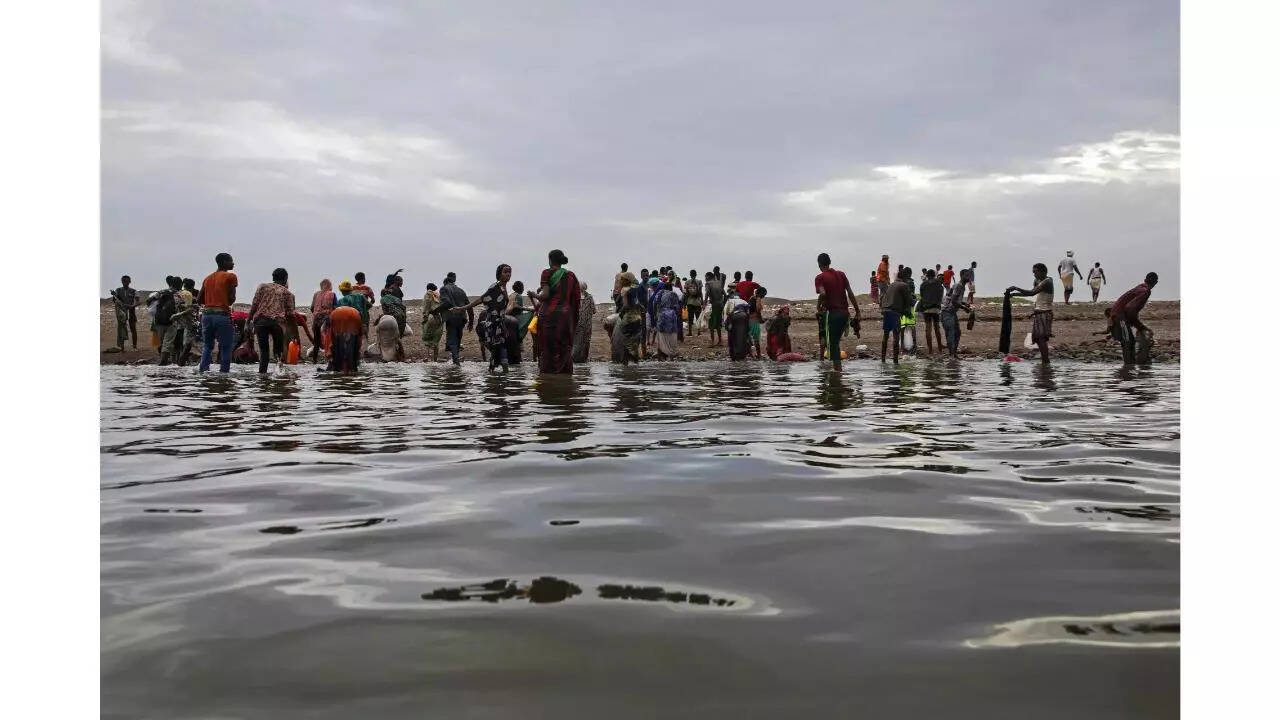
- 10 Aug 2025
In News:
Tuvalu, a small Pacific island nation, is undertaking the world’s first planned national migration due to the existential threat posed by climate change and rising sea levels. The initiative stems from the Falepili Union Treaty (2023) signed between Tuvalu and Australia, marking a landmark case in global climate governance and migration policy.
Why Migration is Needed
- Geography & Vulnerability: Tuvalu consists of nine coral atolls with a total land area of just 25.14 sq. km and a population of ~11,000 (2022 census). Its average elevation is only 2 metres, making it highly vulnerable to flooding, storm surges, and coastal erosion.
- Climate Impact:
- NASA’s Sea Level Change Team reported that sea levels in Tuvalu were already 15 cm higher in 2023 compared to the previous 30 years.
- At this rate, most of Tuvalu could be submerged by 2050.
- Two of its nine atolls are already largely underwater.
- Scientists warn the islands may become uninhabitable within 80 years.
The Falepili Union Treaty (2023)
- Migration Provision: Australia will grant 280 Tuvaluans permanent residency annually, with access to healthcare, education, housing, and employment.
- Selection Mechanism: Migration is ballot-based. The first phase (June–July 2025) saw 8,750 registrations. The first group of 280 migrants was selected on 25 July 2025.
- Scale: Along with other pathways to Australia and New Zealand, up to 4% of Tuvalu’s population could migrate annually. Within a decade, nearly 40% of the population may relocate, although some may return periodically.
- Objective: To ensure “mobility with dignity”, preventing Tuvaluans from becoming stateless climate refugees.
International Significance
- Precedent for Climate Migration: This is the first-ever state-backed relocation of an entire population due to climate change, setting a model for other vulnerable island nations.
- Global Climate Justice: Tuvalu’s case highlights the plight of Small Island Developing States (SIDS) and the urgent need for stronger international climate agreements.
- Diplomatic Signalling: Tuvalu’s Prime Minister Feleti Teo has called for a new global treaty safeguarding nations at risk from rising seas.
About Tuvalu
- Location: Polynesian island nation in the Pacific Ocean, midway between Australia and Hawaii.
- Capital: Funafuti.
- Population: ~11,000 (second least populous UN member after Vatican City).
- Economy: Relies on fishing licenses, foreign aid, and remittances from Tuvaluan seafarers.
- UN Membership: Since 2000; actively champions the rights of climate-vulnerable states.
India’s Joint Doctrines on Cyberspace and Amphibious Operations
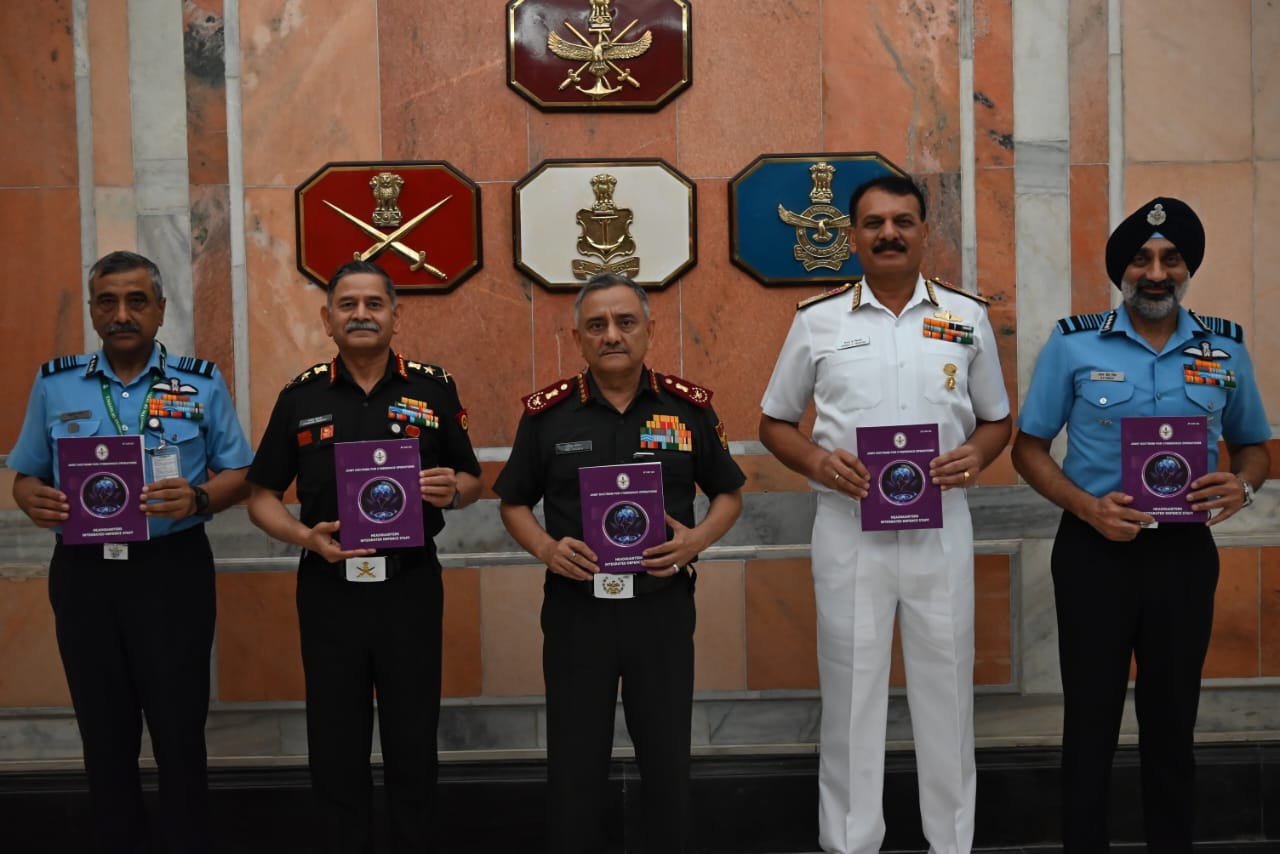
- 10 Aug 2025
In News:
Recently, the Chief of Defence Staff (CDS) General Anil Chauhan released thedeclassified versions of India’s Joint Doctrines for Cyberspace Operations and Amphibious Operations. This step reflects India’s effort to enhance jointness, interoperability, and transparency in military operations while strengthening preparedness for multi-domain warfare.
Cyberspace Operations Doctrine
What is Cyberspace?
- A global domain comprising information systems, communication networks, satellites, and data infrastructures.
- It is borderless, dual-use (civilian and military), and subject to rapidly evolving threats.
Components of Cyberspace Operations
- Defensive Cyber Operations – Protects national and military networks against malware, hacking, and data breaches.
- Offensive Cyber Operations – Targets adversary systems to disrupt communications, disable command networks, or damage infrastructure.
- Cyber Intelligence & Reconnaissance – Collects and analyses data to detect vulnerabilities and anticipate attacks.
- Cyber Support Operations – Provides digital tools and assistance to land, maritime, air, and space operations.
- Resilience & Recovery – Ensures continuity through backup systems, redundancies, and rapid restoration measures.
Operational Principles
- Threat-informed Planning – Based on real-time intelligence.
- Interoperability – Seamless coordination across the three Services and with civil agencies.
- Layered Defence – Multi-tiered cyber security protocols.
- Legal & Ethical Compliance – Operates within Indian law and global cyber norms.
- Real-time Response – Swift counteraction to minimise damage.
Significance:
- Shields critical infrastructure (power grids, defence networks, communication systems).
- Acts as a force multiplier, enhancing conventional operations.
- Prepares India for hybrid warfare, where cyber, land, sea, and air threats are interlinked.
Amphibious Operations Doctrine
What are Amphibious Operations?
- Coordinated actions by naval, air, and land forces launched from the sea to secure objectives onshore.
- Applications range from combat missions to humanitarian assistance and disaster relief (HADR).
Key Features
- Tri-service Integration – Combines maritime, aerial, and ground assets.
- Rapid Response – Enables swift deployment from sea to shore.
- Strategic Reach – Expands influence over island territories and littoral regions.
- Flexible Missions – Suitable for both warfare and non-war operations (e.g., disaster relief).
- Maritime–Land Linkage – Strengthens the sea–land operational continuum.
Significance:
- Enhances maritime superiority in the Indian Ocean Region.
- Secures India’s island territories, trade routes, and coastal areas.
- Strengthens India’s blue-water navy aspirations and capacity for overseas contingencies.
- Provides options for HADR missions, vital in the Indo-Pacific where natural disasters are frequent.
Strategic Importance of Doctrines
The release of these doctrines marks a major step in joint military planning and multi-domain operations. They:
- Promote synergy among the Army, Navy, and Air Force, reducing duplication of efforts.
- Build resilience against hybrid threats, including cyber-attacks and maritime conflicts.
- Signal India’s intent to safeguard its national security and global strategic interests.
- Provide policymakers and military planners with a common framework and lexicon.
Further, the CDS has initiated work on new doctrines covering Military Space Operations, Special Forces Operations, Airborne/Heliborne Operations, Integrated Logistics, and Multi-Domain Operations. These will ensure India remains prepared for the emerging spectrum of modern warfare.
Notary Portal

- 09 Aug 2025
In News:
The Government of India has launched the Notary Portal, a dedicated digital platform designed to modernize services under the Notaries Act, 1952 and the Notaries Rules, 1956. The initiative, led by the Ministry of Law and Justice, aims to create a faceless, paperless, transparent, and efficient system for notarial services.
Key Features
- Online Interface: Connects notaries appointed by the Central Government with the Ministry for seamless service delivery.
- Services Offered:
- Submission of applications for appointment as notaries.
- Verification of eligibility for appointment.
- Issuance of digitally signed Certificates of Practice.
- Renewal of certificates, change of practice area, and submission of annual returns.
- Current Status: Modules for verification of documents, eligibility checks, and issuance of digitally signed certificates are operational.
Significance
- Enhances transparency and efficiency in legal certification processes.
- Reduces paperwork, delays, and physical interface, thereby minimizing scope for corruption.
- Aligns with the government’s broader agenda of Digital India and modernization of legal services.
SheLeadsProgramme
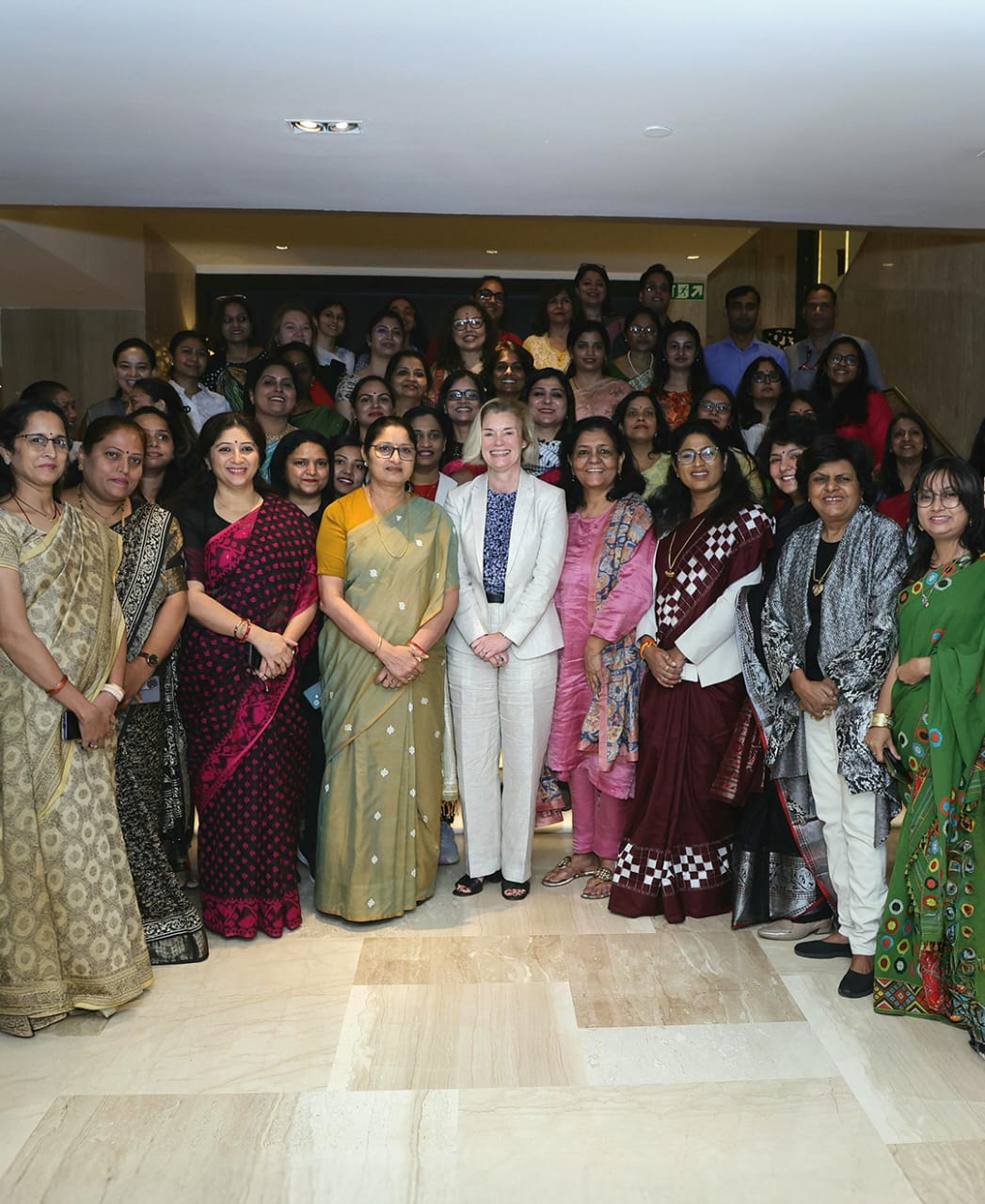
- 09 Aug 2025
In News:
The Union Minister for Women and Child Development, inaugurated the second edition of UN Women’s flagship capacity-building programme — SheLeads II: Workshop for Women Leaders in New Delhi (August 2025). The initiative seeks to strengthen women’s political leadership, a crucial step towards women-led development and the vision of a Viksit Bharat.
Key Highlights:
- The workshop comes in the backdrop of the Women’s Reservation Act, 2023, mandating 33% reservation for women in the Lok Sabha and State Legislative Assemblies.
- Despite this landmark reform, only 14% of seats in the 18th Lok Sabha are currently occupied by women, highlighting the urgent need for leadership training and political empowerment.
About SheLeadsProgramme
- Flagship Initiative: Launched by the UN Women India Country Office.
- Aim: Advance gender equality in public and political leadership, equipping women with skills, confidence, and networks to contest elections and participate effectively in governance.
- Scope: Supports women leaders in shaping policies, governance structures, and electoral narratives that reflect the aspirations of all citizens.
- Participation: In 2025, over 260 applications from 22 states were received; 36 participants were selected for the two-day workshop.
- Engagement: Interactive sessions with MPs, policy experts, and media strategists on electoral campaigning, governance, narrative building, and media engagement.
About UN Women
- Established in 2010 by the UN General Assembly, consolidating resources and mandates under one entity.
- Mandate:
- Support intergovernmental bodies (e.g., Commission on the Status of Women) in framing global standards.
- Assist member states in implementing gender equality commitments through technical and financial support.
- Partner with civil society to advance women’s rights and empowerment.
Strategic Interventions for Green Hydrogen Transition (SIGHT) Scheme

- 09 Aug 2025
In News:
India has achieved a milestone in its clean energy transition with the discovery of a record-low price of ?55.75/kg (USD 641/MT) for Green Ammonia in the first-ever auction conducted by the Solar Energy Corporation of India (SECI) under the Strategic Interventions for Green Hydrogen Transition (SIGHT) Scheme, a core component of the National Green Hydrogen Mission (NGHM).
About the SIGHT Scheme
- Nature: Flagship financial mechanism under NGHM.
- Nodal Ministries: Ministry of New & Renewable Energy (MNRE) and Ministry of Petroleum & Natural Gas (MoPNG).
- Objective:
- Scale up green hydrogen and its derivatives (like green ammonia).
- Make them cost-competitive with fossil-based alternatives.
- Create domestic demand across fertilizer, refining, and shipping sectors.
- Financial Outlay: ?17,490 crore (till 2029–30) out of the total NGHM budget of ?19,744 crore.
- Implementation Modes:
- Mode 1: Incentives to lowest incentive seekers.
- Mode 2A: Aggregated demand for Green Ammonia (fixed incentive).
- Mode 2B: Aggregated demand for Green Hydrogen (fixed incentive).
- Incentive Structure (Mode 2B): ?50/kg (Year 1), ?40/kg (Year 2), ?30/kg (Year 3).
- Monitoring: A joint MNRE–MoPNG committee ensures compliance with notified green hydrogen standards.
First Green Ammonia Auction (Mode-2A)
- Winning Bid: ?55.75/kg (down from ?100.28/kg discovered in H2Global auction 2024).
- Quantity: 75,000 MTPA out of a total tendered 7.24 lakh MTPA.
- Offtaker:Paradeep Phosphates Ltd., Odisha.
- Contract: Fixed 10-year supply, ensuring price stability and supply chain reliability.
- Global Comparison: Price is slightly higher than grey ammonia (USD 515/MT, March 2025) but provides strong economic incentives for clean transition.
India–Nepal Mutual Legal Assistance Pact and Extradition Treaty
- 07 Aug 2025
In News:
India and Nepal have recently finalised a Mutual Legal Assistance (MLA) Agreement in Criminal Matters, marking a significant step in strengthening bilateral security cooperation. The pact is designed to enhance cross-border collaboration in criminal investigations, evidence sharing, and law enforcement.
Mutual Legal Assistance (MLA) in Criminal Matters
- Definition: A bilateral or multilateral treaty that provides a structured framework for cooperation between countries to combat transnational crimes such as terrorism, human trafficking, smuggling, cybercrime, and financial fraud.
- Legal Nature:
- MLAT countries: Legally binding and based on reciprocity.
- Non-MLAT countries: Cooperation remains discretionary.
- India’s Practice:
- Central Authority: Ministry of Home Affairs (MHA), assisted by the Ministry of External Affairs (MEA) when routed through diplomatic channels.
- Existing Network: India has signed MLA treaties with 42 countries (as of November 2019), including the USA (2005), UK (1995), and France (2005).
- Significance for Nepal: Until now, Nepal (along with Bhutan) was the only neighbouring country without such a pact with India, which inadvertently made it a safe haven for criminals.
Extradition Treaty with Nepal
- Current Treaty: India and Nepal are working to revise their outdated 1953 Extradition Treaty.
- Objective of Revision: To overcome legal and administrative hurdles that delay or prevent the extradition of fugitives involved in organised crime and terrorism.
Strategic Importance
- Enhances border management and security cooperation between the two countries.
- Prevents misuse of the open India–Nepal border by criminals and extremists.
- Strengthens India’s regional security framework and supports its fight against transnational crime.
Operation Akhal
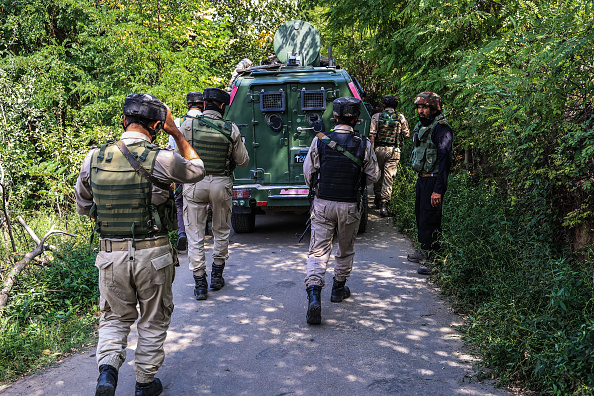
- 07 Aug 2025
In News:
Operation Akhal is a high-intensity counter-terrorism operation being conducted in the AkhalKhulsan forest area of Kulgam district, Jammu & Kashmir. Launched jointly by the Indian Army’s Chinar Corps, the J&K Police, and the Special Operations Group (SOG), the operation reflects India’s continued strategy to dismantle terror networks in the Union Territory.
Objectives
- Neutralize 3–5 terrorists based on intelligence inputs.
- Curb the activities of local terror modules.
- Strengthen internal security in South Kashmir.
- Disrupt associated networks of hawala funding, drug smuggling, and Overground Workers (OGWs).
Key Features
- Nature of Operation: Involves intermittent but calibrated firefights in dense forest terrain, supported by drone surveillance and reinforcements.
- Extended Duration: The operation has continued for several days, indicating the presence of multiple terrorists offering strong resistance.
- Casualties:
- At least three unidentified terrorists have been neutralized.
- Two soldiers — Lance Naik Pritpal Singh and Sepoy Harminder Singh — succumbed to injuries sustained in the encounter, highlighting the intensity of the conflict.
- Security Measures: Strict cordon around suspected hideouts, enhanced surveillance, and troop deployment to block escape routes.
Broader Context
- Operation Akhal is part of a post-Pahalgam crackdown on terror groups and their ecosystem in South Kashmir.
- Reflects India’s evolving counter-terror strategy combining ground operations, intelligence-based targeting, and crackdown on financial/logistical support systems.
Single Window System for Appointment of State DGPs
- 06 Aug 2025
In News:
The Union Government has notified a Single Window System (SWS) to streamline the appointment of State Directors General of Police (DGPs)/Heads of Police Force (HoPFs). This move seeks to ensure transparency, uniformity, and compliance with Supreme Court directives inPrakash Singh vs Union of India (2006) and the Ministry of Home Affairs (MHA) guidelines.
Key Features of the SWS
- Standardization: Provides a checklist and uniform formats for States to submit proposals.
- Eligibility Certification: A Secretary-rank officer must certify that officers proposed for empanelment fulfill criteria, including a minimum of 6 months residual service.
- Timely Submission: States are mandated to send proposals at least 3 months before the anticipated vacancy of the DGP/HoPF.
Constitutional and Legal Framework
- State Subject: Police is a State subject under the 7th Schedule of the Constitution.
- Superintendence: As per Section 3 of the Police Act, 1861, the superintendence of police lies with the State Government.
- District Level: A dual control system exists—authority is shared between the District Magistrate (executive) and the Superintendent of Police (police administration).
- State Police Leadership: State police forces are generally headed by officers of the DGP rank.
India–EFTA Trade and Economic Partnership Agreement (TEPA)
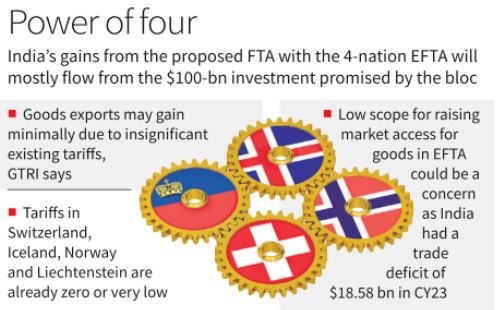
- 06 Aug 2025
In News:
The Trade and Economic Partnership Agreement (TEPA) between India and the European Free Trade Association (EFTA) — comprising Iceland, Liechtenstein, Norway, and Switzerland — will come into force on 1 October 2025.
Key Features of TEPA
- Strategic Investment Commitment
- Legally binding commitment of USD 100 billion FDI in India over 15 years (USD 50 billion in first 10 years + USD 50 billion in next 5 years).
- Expected to generate 1 million jobs.
- Excludes foreign portfolio investment (FPI); sovereign wealth funds exempted.
- India can withdraw tariff concessions if commitments are not met.
- Market Access & Tariff Concessions
- EFTA: 92.2% tariff lines offered, covering 99.6% of India’s exports (100% non-agri products + concessions on processed agri products).
- India: 82.7% tariff lines offered, covering 95.3% of EFTA exports (including gold, which retains existing duty).
- Duty-free access: Indian basmati and non-basmati rice exports, without reciprocity.
- Exclusions: Dairy, soya, coal, and sensitive agri products; protection given to sectors linked with PLI schemes (e.g., pharma, medical devices, processed food).
- Concessions: Cheaper Swiss chocolates, wines, luxury watches (though wines < USD 5 excluded to protect Indian wineries).
- Services & Professional Mobility
- Boosts Indian services exports: IT, business, cultural, sporting, educational, and audiovisual services.
- Mutual Recognition Agreements (MRAs): Nursing, accountancy, and architecture professionals to gain work access in EFTA countries.
- Legal & Institutional Framework
- Covers 14 chapters: market access, trade facilitation, investment promotion, IPR, sustainable development.
- Protects India’s generic medicines; prevents evergreening of patents.
- Promotes technology collaboration but not compulsory technology transfer.
About the European Free Trade Association (EFTA)
- Established: 1960 (Stockholm Convention).
- Members: Iceland, Liechtenstein, Norway, Switzerland (not part of the EU).
- Aim: Promote free trade and economic integration among members and global partners.
India–EFTA Trade Relations
- India is EFTA’s 5th largest trading partner (after EU, US, UK, China).
- Trade Volume (2024–25): USD 24.4 billion.
- India’s exports: USD 1.96 billion (chemicals, iron & steel, precious stones, sports goods, bulk drugs).
- Imports from EFTA: USD 22.45 billion (mainly gold, silver, coal, pharma, vegetable oil, medical equipment, dairy machinery).
- Deficit: Large trade deficit, primarily due to gold imports from Switzerland (USD 20.7 billion in 2021–22).
- India–EFTA Desk: Set up by Invest India as a single-window platform to facilitate investments under TEPA.
Slovenia
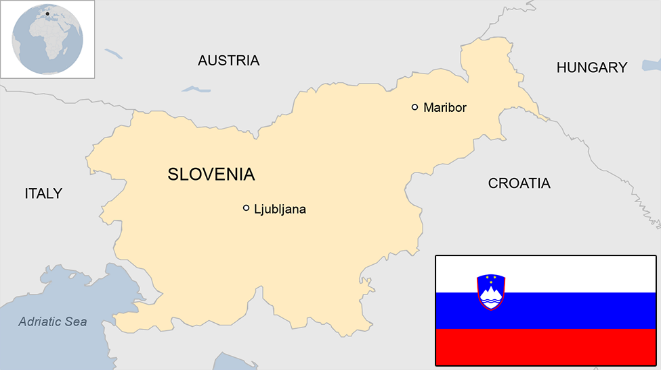
- 06 Aug 2025
In News:
Slovenia has announced a complete ban on the import, export, and transit of weapons to and from Israel in response to Israel’s military actions in Gaza. This makes it the first European Union (EU) member state to enforce a blanket arms embargo on Israel.
Context and Diplomatic Stand
- Slovenia has frequently criticized Israel for alleged atrocities in Gaza.
- In June 2024, Slovenia’s parliament recognisedPalestinian statehood, joining Ireland, Norway, and Spain.
- In July 2024, it barred two far-right Israeli ministers from entering the country, citing “incitement of violence” and “genocidal statements.”
- Although Slovenia’s arms trade with Israel is minimal, the decision carries symbolic diplomatic weight, intended to pressure Israel amid growing international condemnation.
Other European countries have taken partial measures:
- UK (2024): Suspended export of some weapons that could breach international law.
- Spain (2023): Halted arms sales.
- Netherlands, France, Belgium: Tightened regulations or faced legal challenges, but none imposed a total embargo like Slovenia.
Slovenian Prime Minister Robert Golob emphasized that Slovenia would act unilaterally in the absence of collective EU action, accusing the EU of disunity in addressing the humanitarian crisis in Gaza.
About Slovenia
- Location: Central Europe; formerly part of Yugoslavia.
- Capital: Ljubljana.
- Borders: Austria, Hungary, Croatia, Italy; coastline along the Adriatic Sea (Gulf of Venice).
- Memberships: Joined EU and NATO in 2004; uses the Euro.
- Physical Features:
- Alpine Highlands (~40% of territory) – includes Julian Alps, Karavanke, Kamnik-Savinja Alps. Highest peak: Mount Triglav (2,864 m).
- Karst Plateau – globally renowned for caves, sinkholes, underground rivers.
- Subpannonian Plains – fertile alluvial soils; rivers Sava, Drava, Mura drain toward the Danube.
- Slovene Littoral – 47 km coastline; major port Koper.
National Waterway-57 (River Kopili)
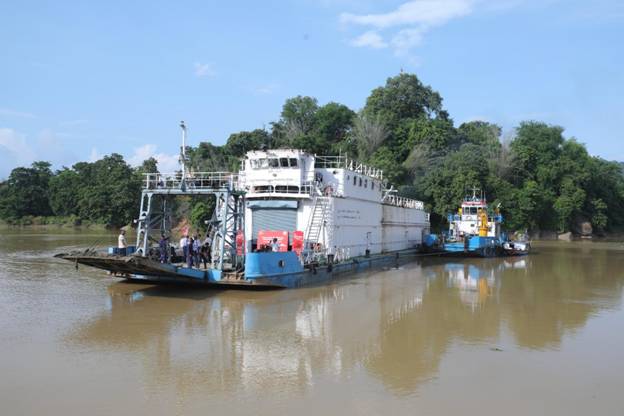
- 05 Aug 2025
In News:
In a landmark development for sustainable logistics in the Northeast, the Kopili River (National Waterway-57) was operationalised with the maiden cargo movement of 300 MT of cement from Chandrapur (Kamrup) to Hatsingimari (South Salmara, Assam).
About the Kopili River
- Origin:Saipong Reserve Forest in the Borail Range, North Cachar Hills, at 1,525 m altitude.
- Length: 256 km (78 km along the Assam–Meghalaya border; 178 km in Assam).
- Basin Coverage: Flows through Meghalaya and Assam, making it an interstate river.
- Significance: Largest south bank tributary of the Brahmaputra in Assam; traverses North Cachar Hill, KarbiAnglong, Nagaon, and Morigaon districts.
- Agricultural Zone: Supports cultivation of rice (winter, summer, autumn), wheat, mustard, and rapeseed in Kamrup and surrounding areas.
Strategic and Policy Significance
- Economic Impact: Reduces road congestion, lowers logistics costs, and provides an efficient alternative for bulk cargo. The trial run replaced the equivalent of 23 truckloads of cement.
- Environmental Gains: Inland water transport curbs emissions and promotes sustainable logistics.
- Regional Development: Enhances connectivity for riverine communities, boosts trade, and unlocks economic opportunities in Assam.
- National Integration: Aligns with Maritime India Vision 2030 and PM Gati Shakti, which seek to create multimodal, integrated transport infrastructure.
Pradhan Mantri National Dialysis Programme (PMNDP)

- 05 Aug 2025
In News:
The Pradhan Mantri National Dialysis Programme (PMNDP) has been significantly expanded by the Government of India and is now operational in all 36 States and Union Territories, covering 751 districts. As of June 30, 2025, a total of 1,704 dialysis centres are functional under the programme.
Background and Objectives
- Launched in 2016, the PMNDP aims to provide free dialysis services to patients suffering from end-stage kidney failure, with special focus on Below Poverty Line (BPL) beneficiaries.
- It is implemented under the National Health Mission (NHM) in Public-Private Partnership (PPP) mode.
- The programme addresses the rising burden of chronic kidney disease and aims to ensure equitable access to life-saving renal care across India.
Key Features
- Dialysis Services: Supports both Haemodialysis and Peritoneal Dialysis.
- Infrastructure Expansion: Initially recommended at all district hospitals, with flexibility to scale down to Community Health Centres (CHCs), especially in remote and tribal regions.
- PMNDP Portal: Integrates all NHM-supported dialysis centres, facilitates creation of a renal registry, and ensures service portability within states (“One State–One Dialysis”) and eventually nationwide (“One Nation–One Dialysis”).
- Funding Mechanism: The NHM provides financial assistance to States/UTs for setting up and operating dialysis centres.
- Implementation Strategy: Expansion is based on gap assessments carried out by States/UTs as part of their annual Programme Implementation Plans (PIPs).
Significance
- Health Equity: Extends life-saving kidney care to vulnerable groups, including rural and tribal populations.
- Cost Reduction: Provides free dialysis, reducing the out-of-pocket burden on families.
- Data Integration: The renal registry aids in epidemiological tracking and planning of kidney health interventions.
- Public Health Impact: Strengthens India’s healthcare delivery under Universal Health Coverage (UHC) goals.
‘Matri Van’ initiative
- 05 Aug 2025
In News:
The Government of India has launched the ‘Matri Van’ initiative in Gurugram under the ‘Ek Ped MaaKe Naam’ programme, symbolizing ecological preservation and community participation. The project was inaugurated by the Union Minister for Environment, Forest and Climate Change, Shri Bhupender Yadav, and the Union Minister for Housing and Urban Affairs and Power, Shri Manohar Lal, during Van Mahotsav 2025.
About the Initiative
- Location & Scale: Spread over 750 acres in the Aravalli hill area along the Gurugram-Faridabad road.
- Concept: A theme-based urban forest aimed at nurturing generations through mother-nature-inspired green efforts.
- Vision: To enhance biodiversity, public well-being, and urban sustainability, while serving as the “heart and lung of Delhi-NCR.”
- Collaboration: Developed through multi-stakeholder participation, including CSR partners, Resident Welfare Associations (RWAs), NGOs, MNCs, school children, and government bodies.
Ecological and Social Significance
- Restoration of degraded land by removing invasive Kabuli Kikar (Prosopis juliflora).
- Plantation of native Aravalli species such as Dhak, Amaltash, Neem, Bargad, Peepal, Gullar, Pilkhan, Khair, Semal, and bamboo.
- Development of theme-based groves, including:
- Bodhi Vatika (sacred fig species like Bargad, Peepal),
- Bamboosetum (bamboo species),
- Aravalli Arboretum,
- PushpVatika (flowering trees),
- Sugandh Vatika (fragrant species),
- Medicinal Plants Vatika,
- Nakshatra and RashiVatika,
- Cactus Garden,
- Butterfly Garden.
Facilities and Infrastructure
- Eco-tourism and community spaces: nature trails, cycle tracks, yoga zones, gazebos, and sitting areas.
- Environmental safeguards: treated water irrigation systems, sprinklers, and waterbodies to aid water conservation and urban flood prevention.
- Urban amenities: parking spaces, public facilities, and accessibility features.
Broader Environmental Vision
- Linked to Mission LiFE (Lifestyle for Environment) with components like:
- Saving food, water, and energy,
- Solid waste and e-waste management,
- Ban on single-use plastics,
- Promotion of healthy lifestyles.
- Complements India’s renewable energy transition, with non-fossil fuel power now accounting for over 50% of the national energy mix.
- Supports Prime Minister’s vision of rejuvenating the Aravalli ecosystem through plantation of native species.
Significance for Delhi-NCR
- Acts as a natural carbon sink to counter rising emissions.
- Provides a green lung to improve air quality in a highly polluted urban region.
- Promotes eco-tourism and environmental education through biodiversity parks, wildlife safaris, and thematic groves.
- Offers citizens a serene, stress-free environment, strengthening the image of Gurugram as a model “Millennium City.”
Investor Education and Protection Fund Authority (IEPFA)
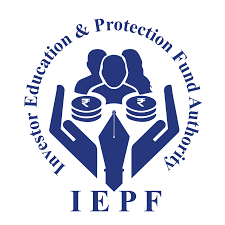
- 05 Aug 2025
In News:
The Investor Education and Protection Fund Authority (IEPFA), established in 2016 under the Companies Act, 2013, functions under the Ministry of Corporate Affairs (MCA) with the mandate of safeguarding investor interests, refunding unclaimed financial assets, and promoting financial literacy across India.
Mandate and Fund Structure
The Investor Education and Protection Fund (IEPF) consists of amounts that remain unclaimed for seven years, including:
- Unpaid dividends,
- Application money due for refund,
- Matured deposits and debentures,
- Accrued interest on investments,
- Grants and donations received from government or other entities.
The fund is utilized to refund unclaimed shares/dividends to rightful investors and to spread financial awareness among citizens.
Recent Developments: Integrated Portal
IEPFA is in the final phase of testing its Integrated Portal, a unified digital platform aimed at:
- Streamlining claim processes for unclaimed shares/dividends,
- Enhancing accessibility for both investors and companies,
- Integrating stakeholders such as depositories and the Public Financial Management System (PFMS).
Companies have been urged to upload their IEPF-1/7 SRNs with prescribed templates to enable smooth data verification and claim processing.
Key Features of the New System
- Simplified claims for low-value refunds through reduced documentation.
- Integrated Call Center to strengthen grievance redressal and ensure responsive communication with stakeholders.
- Temporary disruptions may occur during transition, but the reforms promise faster, transparent, and investor-friendly outcomes.
Investor Awareness Initiatives
IEPFA also undertakes extensive financial literacy campaigns through programs like:
- Niveshak Didi,
- Niveshak Panchayat,
- NiveshakShivir.
These initiatives empower citizens, particularly in rural and semi-urban areas, to make informed financial decisions and protect themselves from fraud and mismanagement.
Significance
- For Investors: Easier access to unclaimed assets and improved grievance redressal.
- For Companies: Structured compliance framework and digital integration with regulators.
- For Governance: Strengthens India’s financial ecosystem by combining investor protection with financial literacy.
BlueBird Communications Satellite
- 04 Aug 2025
In News:
Following the successful NISAR (NASA–ISRO Synthetic Aperture Radar) mission, the Indian Space Research Organisation (ISRO)is preparing for its next major collaboration with the United States: the launch of the BlueBird communications satellite. The mission highlights India’s growing role as a reliable global launch partner and the expanding scope of Indo–U.S. space cooperation.
The BlueBird Satellite
- Developer: U.S.-based AST SpaceMobile
- Type: Advanced communications satellite designed for direct satellite-to-smartphone connectivity
- Weight: ~6,000 kg
- Antenna: Innovative 64-square-metre antenna array for high-capacity communication
- Orbit: Low Earth Orbit (LEO)
- Technology:
- Enables direct calling and broadband access from space without the need for ground-based mobile towers
- Supports beams up to 40 MHz capacity
- Offers peak speeds of up to 120 Mbps
- Service Plan: After deployment, BlueBird satellites will provide non-continuous broadband cellular service initially in the U.S. and select global markets.
Launch Details
- Launch Vehicle: LVM3 (Launch Vehicle Mark-3), ISRO’s heaviest rocket, formerly known as GSLV Mk-III
- Launch Site: Satish Dhawan Space Centre, Sriharikota
- Timeline: Expected launch in the next 3–4 months (as per ISRO chairman V. Narayanan)
Strategic Significance
- For India–U.S. Cooperation:
- Follows the joint NISAR Earth observation mission, reinforcing strategic space ties.
- Strengthens India’s position as a preferred partner for global commercial satellite launches.
- For India’s Space Economy:
- Enhances ISRO’s reputation in heavy-lift commercial launches, particularly with LVM3.
- Showcases India’s cost-effective access to space, attracting further foreign collaborations.
- For Global Communication Technology:
- Marks a breakthrough in direct-to-device (D2D) connectivity, reducing dependency on ground infrastructure.
- Could help expand mobile and broadband coverage to remote and underserved regions worldwide.
Polavaram–Banakacherla Link Project (PBLP)
- 04 Aug 2025
In News:
The bifurcation of Andhra Pradesh in 2014 created prolonged disputes between Andhra Pradesh (AP) and Telangana over sharing the waters of the Krishna and Godavari rivers. Issues have resurfaced with Andhra Pradesh’s proposal of the Polavaram–Banakacherla Link Project (PBLP), opposed by Telangana on legal and ecological grounds.
In July 2025, the Union Government decided to set up two dedicated river management boards—the Krishna River Management Board (KRMB) at Amaravati and the Godavari River Management Board (GRMB) at Hyderabad. Both will include Central officials, technical experts, and representatives from the two states.
Polavaram–Banakacherla Link Project (PBLP)
- Objective: Divert 200 TMC of surplus Godavari floodwaters to drought-prone Rayalaseema by linking the Polavaram reservoir to the Banakacherla regulator in Kurnool district.
- Water Transfer Mechanism:
- Draw water from Polavaram Dam
- Convey through Prakasam Barrage → lift to Bollapalli reservoir
- Tunnel through the Nallamala hills → release into Banakacherla reservoir
- Significance: Strengthens irrigation, drinking water supply, and agricultural sustainability; aligns with national schemes such as Jal Jeevan Mission, Blue Revolution, and Make in India.
Telangana’s Concerns
- Violation of the Andhra Pradesh Reorganisation Act, 2014 – which requires prior approval of the Apex Council, KRMB, and CWC for new inter-state river projects.
- Disputed “Surplus” Claim – Telangana contests Andhra’s claim of 200 TMC surplus Godavari waters, arguing no adjudicatory body has approved such diversion.
- Environmental and Legal Clearances – Though the Polavaram Project got clearance in 2005, the Expert Appraisal Committee has called for fresh scrutiny, especially due to submergence concerns in Odisha and Chhattisgarh.
- Unauthorised Inter-Basin Diversion – Godavari-to-Krishna transfer without mutual consent could undermine Telangana’s own projects.
- Breach of Cooperative Federalism – Telangana sees unilateral action by Andhra as bypassing consensus-driven water governance.
Consensus Achieved in July 2025 Talks
- Telemetry Systems: Both states agreed to install real-time monitoring devices at reservoirs and projects to ensure transparency in water usage.
- Srisailam Project Repairs: Andhra agreed to undertake crucial maintenance at this shared project.
- Board Reorganisation: KRMB’s office to shift to Amaravati/Vijayawada for better oversight.
- Joint Committee: High-level committee of central, state, and technical experts to study outstanding issues and recommend equitable solutions.
Legal and Institutional Mechanisms for Inter-State Water Disputes
- Constitutional Provisions:
- Article 262: Parliament may legislate for adjudication of inter-state water disputes; can also bar courts’ jurisdiction.
- State List (Entry 17): States control water-related issues.
- Union List (Entry 56): Centre can regulate inter-state rivers in the national interest.
- Statutory Framework:
- River Boards Act, 1956: Allows River Boards for coordinated development; not implemented in practice.
- Inter-State Water Disputes Act, 1956: Provides for tribunals. Amendments in 2002 mandated quicker constitution of tribunals (1 year) and decisions within 3 years.
- Judicial Role: Despite Article 262(2), the Supreme Court has intervened in interpretation and implementation of tribunal awards (e.g., Mahadayi Water Dispute, 2018).
A New Approach to Treating Liver Cirrhosis
- 04 Aug 2025
In News:
A team of Indian scientists may have found a way to improve the drainage capacity of lymphatic vessels in the liver and intestine that fails in case of cirrhosis, by using nanocarriers filled with a powerful protein called VEGF-C.
Understanding Liver Cirrhosis
Cirrhosis is the advanced stage of chronic liver disease where healthy tissue is replaced by scar tissue due to prolonged inflammation. This structural distortion affects both blood and lymphatic vessels in the liver and intestine, impairing circulation and fluid balance.
Causes:
- Excessive alcohol consumption
- NASH (Non-Alcoholic Steato-Hepatitis)
- Chronic viral infections such as Hepatitis B and C
Symptoms (often in advanced stages): extreme fatigue, loss of appetite, easy bruising or bleeding, swelling in legs/ankles (edema), and abdominal fluid accumulation (ascites).
The Problem of Lymphatic Dysfunction
In cirrhosis, lymphatic vessels (mesenteric lymphatic vessels or mLVs) become dilated and dysfunctional. Normally, these vessels drain interstitial fluid, proteins, and immune cells back into venous blood.
- In cirrhosis, lymph production increases nearly 30-fold due to portal hypertension and liver congestion.
- Dysfunctional lymph flow leads to ascites (abdominal fluid buildup), one of the most serious complications of decompensated cirrhosis.
- Currently, there is no effective therapy to correct this lymphatic dysfunction.
The VEGF-C Based Breakthrough
A joint team from the Institute of Liver and Biliary Sciences (ILBS), New Delhi and the National Institute of Pharmaceutical Education and Research (NIPER), Guwahati has developed a novel therapy using Vascular Endothelial Growth Factor-C (VEGF-C).
- Role of VEGF-C: A key pro-lymphangiogenic factor that binds to VEGFR-3 receptors, stimulating the growth of new lymphatic vessels and enhancing drainage.
- Challenge: VEGF-C has a short half-life, is hydrophilic, and can cause systemic side effects.
The Innovation: Nanocarriers
- Scientists at NIPER designed reverse micelle-based nanocarriers to encapsulate VEGF-C, ensuring targeted delivery to gut lymphatic vessels.
- These nanocarriers specifically bind to VEGFR-3 homodimers, maximizing efficacy and minimizing side effects.
- The formulation was delivered orally in animal models, ensuring uptake by intestinal lymphatic vessels.
Findings (Animal Studies)
- Significant increase in mesenteric lymph drainage
- Reduction in ascites and portal hypertension
- Enhanced cytotoxic T-cell immunity in lymph nodes
- Reduction in local and systemic bacterial load
Significance and Future Prospects
- This is the first study to demonstrate that therapeutic lymphangiogenesis using VEGF-C can reconstruct fragmented lymphatic networks and restore function in advanced cirrhosis.
- Funded by the DST Nano Mission and published in JHEP Reports, it marks a major step in translational medicine.
- Next steps: Preclinical studies in larger animals, followed by human clinical trials to establish safety, dosage, and efficacy.
Human Outer Planet Exploration (HOPE)
- 03 Aug 2025
In News:
- India has taken a decisive step in advancing its space exploration ambitions with the launch of theHuman Outer Planet Exploration (HOPE) analogue station in Ladakh’s Tso Kar region.
- Developed by Bengaluru-based space science company Protoplanet in collaboration with the Indian Space Research Organisation (ISRO), the station is designed to simulate extra-terrestrial conditions, closely mimicking the geological and environmental features of the Moon and Mars.
What is HOPE?
- Analogue Station Concept: An analogue research station replicates planetary conditions to test technologies, study human adaptability, and conduct crew training. Globally, there are 33 such facilities, including BIOS-3 (Russia), HERA (USA), SHEE (Europe), and the Mars Desert Research Station (Utah, USA).
- Location & Conditions: Situated at an altitude of over 14,500 feet, Tso Kar offers a cold desert and high-altitude environment, chosen after nine years of study. Its extreme terrain makes it an “exceptional analogue site” for simulating extraterrestrial challenges.
- Mission Objective: HOPE aims to generate insights into human adaptability, resilience, and technology readinessfor sustained human presence beyond Earth.
Research and Operations
From August 1, 2025, selected crew members will undergo 10-day isolation missions inside the station. They will be subject to:
- Physiological studies – monitoring body adaptation in extreme conditions.
- Psychological studies – assessing mental resilience during confinement.
- Epigenetic research – studying biological changes in response to stress and environment.
Significance for India
- Strengthening Human Spaceflight Programme: This initiative provides critical data on crew adaptability for long-duration missions, supporting India’s vision of human exploration.
- Policy Alignment: The mission aligns with Prime Minister Narendra Modi’s announcement of establishing the BharatiyaAntariksh Station by 2035 and launching a manned Moon mission by 2040.
- Global Context: While NASA is targeting a manned mission to Mars by the 2030s, India is positioning itself as a rising player in deep-space exploration.
Strategic Importance
- Scientific Gains: HOPE will aid in technology validation, geological studies, life-detection research, and habitability assessments.
- International Standing: India joins the select group of countries operating analogue research stations, strengthening its credibility in interplanetary exploration.
- Capacity Building: The project helps build indigenous expertise in crew training, mission simulations, and psychological conditioning, paving the way for sustained space presence.
OECD Report on Plastic Pollution in Southeast & East Asia
- 03 Aug 2025
In News:
The Organisation for Economic Cooperation and Development (OECD) has warned that plastic use and waste in Southeast and East Asia could nearly double by 2050 unless countries adopt urgent and stringent policy measures. The findings are particularly significant as they coincide with the final round of UN negotiations on a global plastics treaty scheduled in August 2025 in Geneva.
Key Findings of the OECD Report
1. Surge in Plastic Use and Waste
- Plastic consumption in the ASEAN Plus Three (APT) region – which includes ASEAN-10 (Brunei, Cambodia, Indonesia, Laos, Malaysia, Myanmar, Philippines, Singapore, Thailand, Vietnam) plus China, Japan, and South Korea – is projected to rise from 152 million tonnes (2022) to 280 million tonnes (2050).
- Plastic waste will increase from 113 million tonnes (2022) to 242 million tonnes (2050).
- Packaging waste alone will almost double, from 49 million tonnes to 91 million tonnes.
2. Regional Disparities
- China will see the largest absolute rise, from 76 million tonnes (2022) to 160 million tonnes (2050).
- Lower-middle-income ASEAN nations such as Indonesia, Vietnam, and the Philippines will see the sharpest relative increase, with plastic waste nearly quadrupling from 7.5 million tonnes to 28 million tonnes.
3. Mismanaged Waste and Leakage
- Share of mismanaged plastic waste may fall (29% → 23% between 2022–2050), but total mismanaged waste will grow from 33 million tonnes to 56 million tonnes.
- The region is already the largest contributor to global plastic leakage – 8.4 million tonnes in 2022 (one-third of global leakage), projected to rise to 14.1 million tonnes by 2050.
- Plastic build-up:
- Freshwater systems: from 57 million tonnes (2022) → 126 million tonnes (2050).
- Oceans: from 17 million tonnes (2022) → 55 million tonnes (2050).
4. Climate Implications
- Greenhouse gas emissions from the plastic lifecycle (production + waste management) in the APT region are expected to nearly double from 0.6 GtCO?e (2022) to over 1 GtCO?e (2050).
Global High Stringency Scenario: Pathway to Solutions
OECD outlines a Global High Stringency (GHS) policy scenario that can reverse the trajectory:
- Plastic use: Could drop by 28% by 2050.
- Plastic waste: Could fall by 23%.
- Recycling: Average recycling rate could reach 54%, with secondary plastics meeting all future demand growth.
- Mismanaged waste: Could decline by 97%, drastically reducing environmental leakage.
Key recommended measures:
- Phase out single-use plastics.
- Strengthen waste collection systems and invest in recycling infrastructure.
- Promote circular economy approaches and regional cooperation.
Regional and Global Implications
- Cross-border challenge: Plastics persist for decades and move across boundaries. Poorer ASEAN nations like Indonesia often receive waste leakage from wealthier neighbours and China, with spillover impacts reaching the Indian Ocean and African coasts.
- Climate risks: Rising plastic demand intensifies emissions, undermining climate action goals.
- Global treaty negotiations: The report’s timing strengthens the case for an ambitious legally binding plastics treaty.
Piprahwa Relics
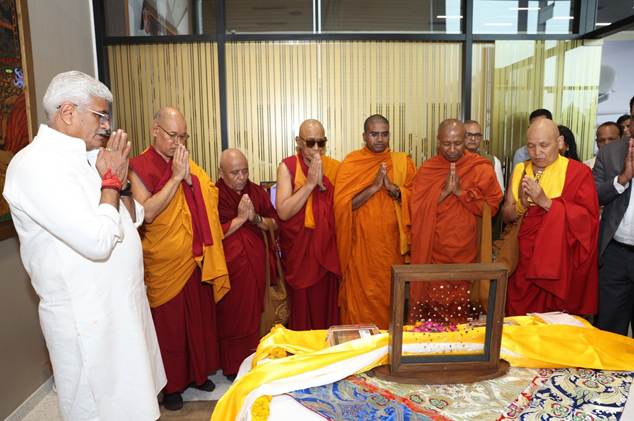
- 02 Aug 2025
In News:
The recent return of the sacred Piprahwa relics of Lord Buddha to India marks a landmark moment in India’s cultural diplomacy, heritage preservation, and spiritual history. Orchestrated by the Ministry of Culture in partnership with the Godrej Industries Group, this event prevented the relics’ auction in Hong Kong (May 2025) and instead restored them to their rightful home. For India, the land where the Buddha attained enlightenment and preached, this repatriation is more than a matter of archaeology—it reaffirms India’s role as the civilizational custodian of global heritage.
What are the Piprahwa Relics?
- Association: Believed to be the mortal remains of Lord Buddha, enshrined by the Sakya clan (his kinsmen) in the 3rd century BCE.
- Discovery: Excavated in 1898 by William Claxton Peppé, a British civil engineer and estate manager, from a stupa at Piprahwa, Uttar Pradesh, located just south of Lumbini (Buddha’s birthplace, now in Nepal).
- Contents:
- Bone fragments of the Buddha
- Caskets: soapstone, crystal, and sandstone coffer
- Offerings: gold ornaments, gemstones, and other ritual objects
- Inscription: A Brahmi script engraving on one of the caskets confirmed the relics’ identity, noting they were deposited by the Sakya clan.
Historical Journey of the Relics
- Colonial Appropriation (1898–1899)
- Following their discovery, the British Crown claimed the artefacts under the Indian Treasure Trove Act, 1878.
- The bone and ash relics were gifted to King Chulalongkorn of Siam (Thailand), reflecting colonial practices of cultural transfer.
- The majority of the remaining relics were placed in the Indian Museum, Kolkata (1899).
- Legal Protection
- Classified as ‘AA’ antiquities under Indian law, these relics cannot be sold, exported, or removed—underscoring their sacred and national significance.
- Attempted Auction in 2025
- The relics resurfaced in Hong Kong for an intended auction.
- Through timely diplomatic and legal intervention, supported by public-private partnership with the Godrej Group, the Ministry of Culture secured their return.
Significance of the Repatriation
1. Spiritual and Cultural Significance
- Buddhism, which spread from India across Asia, regards relics of the Buddha as sacred embodiments of peace, compassion, and enlightenment.
- The return reaffirms India as the spiritual homeland of Buddhism, strengthening cultural linkages with Buddhist-majority nations like Thailand, Myanmar, Japan, and Sri Lanka.
2. Archaeological and Historical Importance
- Piprahwa is one of the earliest archaeologically verified stupa sites.
- The discovery provides rare material evidence of Buddhist practices of relic veneration, confirming textual accounts in Buddhist scriptures.
3. Diplomatic and Soft Power Dimensions
- The move highlights cultural diplomacy as a tool of India’s foreign policy.
- India positions itself as a global guardian of Buddhist heritage, enhancing ties with Southeast Asian nations where Buddhism is deeply rooted.
4. Model of Public–Private Partnership
- The collaboration between the Government of India and the Godrej Industries Group sets a precedent for safeguarding heritage.
- It reflects how corporate social responsibility (CSR) can extend beyond business to civilizational legacy.
Schengen Visa Cascade Regime
- 02 Aug 2025
In News:
Since 18 April 2024, the European Commission implemented a preferential “cascade” regime under the revised Schengen Visa Code (2020 reform), offering long-term, multiple-entry Schengen visas to Indian nationals with a clean travel history. Originally effective for India, Turkey, and Indonesia, this regime could expand to other countries based on diplomatic and readmission cooperation.
What Is the Schengen Area & Visa Basics
- The Schengen Area comprises 29 countries, including most EU members and four EFTA nations—allowing passport-free movement.
- A Schengen (short-stay) visa permits up to 90 days within any 180-day period. It is purpose-flexible (tourism, business, visiting family, etc.) but does not confer work rights.
The Cascade Regime – A Tiered System
Tier-Based Progression
The regime introduces a pyramid-like progression based on prior visa use:
|
Tier |
Requirement |
Visa Validity |
|
Entry-level |
First-time or minimal travel history |
Short-term, single-entry (probationary) |
|
Tier 1 |
Used three Schengen visas in the past 2 years |
1-year multiple-entry |
|
Tier 2 |
Held and lawfully used a 1-year multiple-entry visa in the past 2 years |
2-year multiple-entry |
|
Tier 3* |
Used a 2-year multiple-entry visa in the past 3 years |
5-year multiple-entry |
*Availability of the 5-year visa depends on passport validity.
Underlying Rule
Mexico’s 90/180 rule still applies: holders can stay only up to 90 days within any rolling 180-day period.
What's Special for Indian Nationals
- The cascade regime for Indians is more favorable than the general rule (which typically demands three prior visas within 2 years for progression). Indians now qualify for a 2-year visa with just two prior visas within 3 years, thanks to a special provision under Article 24(2c) of Regulation (EC) No 810/2009.
- The visa must not exceed passport validity—if the passport expires earlier, the visa has to be correspondingly shorter.
- The policy is discretionary—granting long-term visas (especially 5-year ones) depends on the visa officer’s judgement, even if eligibility criteria are technically met.
Strategic and Policy Significance
- People-to-people diplomacy: The cascade visa fosters cultural, business, and academic exchange, aligning with the EU's emphasis on soft power and deepening ties with India.
- Bilateral alignment: Reflects the EU-India Common Agenda on Migration and Mobility, and dovetails with negotiations around the India–EU Free Trade Agreement (FTA).
- Administrative efficiency: Long-term visas reduce repeat applications—beneficial for both visa applicants and consular resources.
- Reciprocity and expansion: Initially for India, Turkey, and Indonesia; the regime may expand to more countries based on cooperation levels.
SIMBEX-25
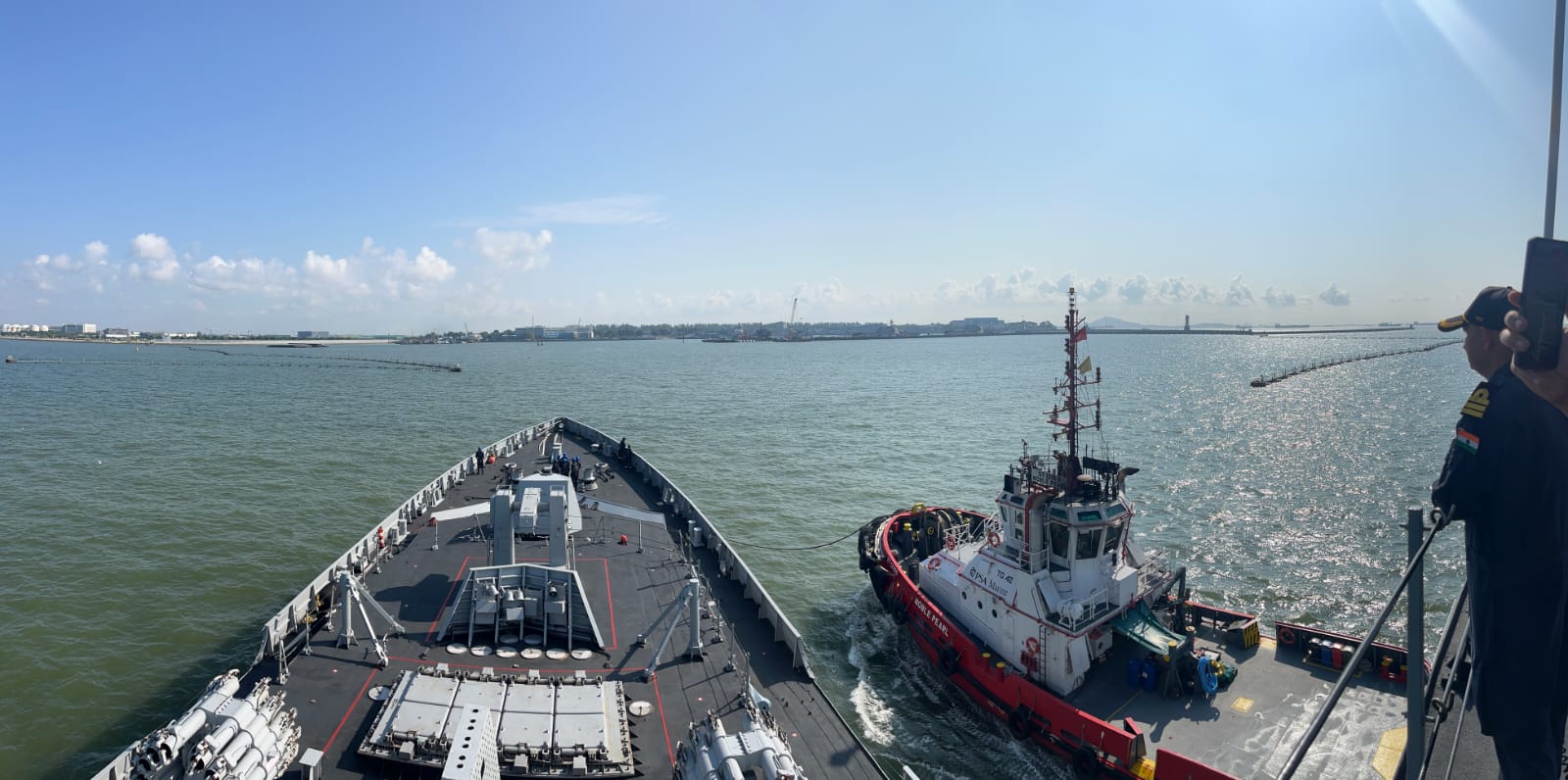
- 01 Aug 2025
In News:
- The 32nd edition of SIMBEX—India’s longest continuously conducted maritime bilateral exercise—was held from 28 July to 1 August 2025, hosted by Singapore. It included a Harbour Phase at Changi Naval Base and a Sea Phase in the southern South China Sea.
- Indian participation: INS Satpura, alongside INS Delhi, INS Kiltan, and the support vessel INS Shakti.
- Singapore Navy elements: RSN Vigilance and RSN Supreme, supported by MV Mentor and aerial units—S-70B Seahawk, Fokker-50 aircraft, and F-15SG fighters.
Objectives & Activities
Harbour Phase
- Featured Subject Matter Expert Exchanges (SMEEs), professional presentations, and strategic interactions.
- Conducted deck familiarisation visits aboard respective ships to foster doctrinal alignment
Sea Phase
- Encompassed advanced drill sequences, including:
- Air defence exercises, cross-deck helicopter operations
- Precision targeting, complex manoeuvres, and VBSS operations (Visit, Board, Search, and Seizure)
- Concluded with a ceremonial sail-past, symbolising professionalism and unity.
Geopolitical Landscape
- Strategic Reach: Deployment of Indian vessels to Philippines and Vietnam — alongside participation in SIMBEX—demonstrates India’s extended operational posture in Southeast Asia amidst regional tensions, notably with China’s maritime assertiveness.
- Broader Continuity: The Indian Navy, operating via the Andaman and Nicobar Command, employs SIMBEX as part of a broader matrix of maritime outreach in the region, including CORPAT and MILAN exercises
Sawalkote Hydroelectric Project
- 01 Aug 2025
In News:
In a strategic shift, India has floated international tenders for constructing the long-stalled Sawalkote Hydroelectric Project (1,856 MW) on the Chenab River in Jammu & Kashmir, leveraging the fact that the Indus Waters Treaty (IWT) with Pakistan is currently in abeyance. This development marks a significant turn in India’s water diplomacy and infrastructure planning.
Background & Project Details
- Location & Nature: Sawalkote is a run-of-river hydropower project near Sidhu village in Ramban district, J&K.
- Conception & Delay: Originally conceived in the 1980s, handed to NHPC in 1985, then returned to JKSPDC in 1997. Despite Rs 430 crore spent on enabling infrastructure, the project remained unstarted until a 2021 MoU revived it under an BOOT (Build-Own-Operate-Transfer) model.
- Tender Process: In July 2025, NHPC invited international bids (design, planning, engineering) with bid submissions due by September 10, 2025.
- Scale & Costs: Estimated cost stands at Rs 22,704.8 crore, set to be executed in two phases.
- Environmental Clearances: Forest Advisory Committee granted in-principle approval for diversion of 847 hectares of forest land.
Indus Waters Treaty (IWT) & Its Suspension
- Treaty Overview: Signed in 1960 (brokered by the World Bank), IWT allocates the eastern rivers (Ravi, Beas, Sutlej) to India, and the western rivers (Indus, Chenab, Jhelum) to Pakistan. India retains limited non-consumptive usage rights for hydro-power on these western rivers.
- First Suspension: On 23 April 2025, following a terrorist attack in Pahalgam, India suspended the IWT, citing national security and the treaty’s exploitation by Pakistan for cross-border terrorism.
- Consequences: India ceased hydrological data sharing, blocked Pakistani access to project visits, and released annual joint-status reporting—effectively halting treaty obligations.
- Strategic Intent: This pause grants India freedom to launch projects like Sawalkote without Pakistan’s prior objections or IWT constraints.
Geopolitical Tensions & Ramifications
- Long-term Impact on Pakistan: The Indus system sustains ~80% of Pakistan’s agriculture and electricity. Disruption could severely undermine food security, hydropower production, and urban water supply.
- Symbolism of a Rift: The treaty had survived wars and conflicts. Its suspension is viewed as an overt break in regional cooperative norms, with potential for conflict escalation.
- Legal & Diplomatic Fallout: Pakistan views reduced water flows as “act of war”; it is exploring legal avenues and appealing for treaty revival.
- India’s Firm Stance: PM Modi has labeled the treaty “unjust,” declared “blood and water cannot flow together,” further hardening India's negotiating posture.
Strategic Evaluation
- Violation or Tactical Move? While the IWT allows limited usage by India, its suspension indicates a focus on infrastructure autonomy over the western river system.
- Regional Domino Effects: With rising global water disputes, actions like this may set precedent in viewing water as geopolitical leverage.
- Environmental & Social Risks: Dam construction and forest diversion raise ecological concerns; plus, local displacement and compensation need careful handling.
Dorjilung Hydropower Project
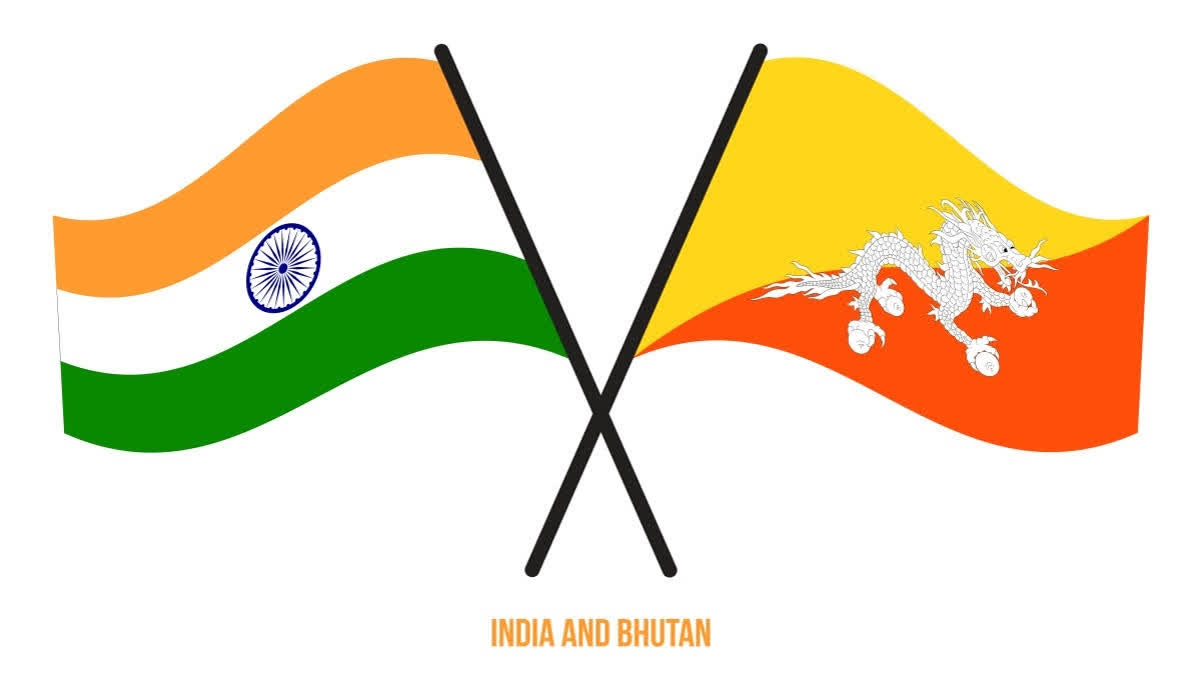
- 01 Aug 2025
In News:
India and Bhutan share one of the most successful models of hydropower cooperation in South Asia. The launch of the 1125 MW Dorjilung Hydropower Project in Bhutan, with Tata Power’s equity participation alongside Bhutan’s Druk Green Power Corporation (DGPC), marks a turning point in cross-border energy diplomacy. Unlike earlier projects dominated by Indian government financing, Dorjilung reflects a shift towards Public–Private Partnership (PPP), multilateral funding, and private sector involvement.
Key Features of the Project
- Type: Run-of-the-river scheme on the Kurichhu River (tributary of Drangmechhu, flows into India).
- Location: Mongar and Lhuentse districts, eastern Bhutan.
- Technical Specs:
- Dam height: ~139.5 m (concrete-gravity).
- Headrace tunnel: 15 km.
- Powerhouse: 6 Francis turbines.
- Annual generation: ~4.5 TWh.
- Cost: USD 1.7 billion (~?150 billion).
- Funding: World Bank.
- Equity Structure: DGPC (60%) + Tata Power (40%).
- Timeline: Commissioning expected by 2032.
India–Bhutan Energy Ties
- Existing Cooperation:
- Governed by the 2006 Bilateral Agreement on Hydropower Cooperation (protocol revised 2009).
- 4 operational projects supplying power to India: Chhukha (336 MW), Kurichhu (60 MW), Tala (1020 MW), Mangdechhu (720 MW).
- Punatsangchhu I (1200 MW) and Punatsangchhu II (1020 MW) under construction.
- Economic Importance for Bhutan:
- Hydropower exports = 40% of govt revenue and 25% of GDP.
- India buys surplus electricity, ensuring stable market access.
- India’s Strategic Interest:
- Ensures clean energy imports.
- Strengthens regional energy security.
- Counters Chinese presence in the Himalayan hydropower sector.
What Makes Dorjilung Different?
- PPP & Private Sector Role: First large-scale project with an Indian private company (Tata Power) holding major equity.
- Diversified Financing: World Bank funding reduces Bhutan’s dependence on Indian grants and credit lines.
- B2B Model: Moves from a government-to-government (G2G) model to business-to-business (B2B), granting Bhutan greater autonomy and bargaining parity.
- Integrated Renewable Plan: Tata Power–DGPC partnership envisions 5000 MW clean energy capacity, including:
- Dorjilung (1125 MW)
- Gongri (740 MW)
- Jeri Pumped Storage (1800 MW)
- Chamkharchhu IV (364 MW)
- Solar projects (500 MW).
Strategic & Geopolitical Significance
- For Bhutan:
- Reduces financial vulnerability by avoiding overdependence on Indian government aid.
- Attracts global institutions (World Bank), raising international credibility.
- Boosts local development in eastern districts (infrastructure, jobs).
- For India:
- Enhances energy security via long-term clean energy imports.
- Strengthens economic diplomacy with a trusted neighbour.
- Counters China’s Belt and Road Initiative (BRI) push in Himalayan hydropower (e.g., Nepal’s tilt towards Chinese funding).
- Supports Paris Agreement & renewable targets.
- For the Region:
- Creates scope for regional energy grids under BIMSTEC and BBIN (Bangladesh, Bhutan, India, Nepal).
- Encourages private-sector led cross-border energy trade.
Challenges Ahead
- Delayed Timelines: Past Bhutanese projects (e.g., Punatsangchhu I & II) suffered huge delays and cost overruns.
- Debt Burden: Large projects raise Bhutan’s external debt, though hydropower revenue offsets this risk.
- Environmental Concerns: Dam construction in fragile Himalayan ecosystems risks landslides, habitat loss, and displacement.
- Domestic Politics: Growing debate within Bhutan on overdependence on India; balancing autonomy with partnership is key.
- Regional Rivalries: India’s refusal to import power from Chinese-funded projects in Nepal shows how geopolitics can complicate energy trade.
Way Forward
- Diversify Financing: Blend of multilateral, private, and bilateral sources to reduce dependency risks.
- Strengthen Grid Connectivity: Expand India–Bhutan–Bangladesh power corridors.
- Sustainable Practices: Ensure climate-resilient dam design, environmental safeguards, and local community participation.
- Expand Solar–Hydro Synergy: Hybrid models (hydropower + solar) to ensure round-the-clock renewable supply.
- Institutional Mechanisms: Strengthen the India–Bhutan Joint Group on Hydropower Projects for dispute resolution and faster approvals.
First-Ever Grassland Bird Census in Kaziranga National Park
- 31 Jul 2025
In News:
The first dedicated Grassland Bird Census was conducted in Kaziranga National Park, Assam, marking a significant step in avian biodiversity monitoring in India. The initiative was widely acknowledged, including by Prime Minister Narendra Modi in his Mann Ki Baat broadcast, for its innovative use of Artificial Intelligence (AI) and acoustic monitoring.
Objective and Significance
- Purpose: To systematically monitor the population, breeding patterns, and habitat health of grassland-dwelling bird species, many of which are rare or threatened.
- Conservation Value: Grassland birds serve as ecological indicators of habitat quality, akin to how BMI reflects human health.
- Highlight Species:
- Documented 43 bird species
- Included 1 Critically Endangered, 2 Endangered, and 6 Vulnerable species (IUCN Red List)
- Notably, over 85 nests of the endangered Finn’s Weaver, endemic to the Brahmaputra floodplains, were discovered.
Methodology & Technological Innovations
- Conducted By: Joint effort of forest officials, Kaziranga National Park authorities, conservationists, and researchers including INSPIRE fellow Chiranjib Bora.
- Sites Covered: 185 grassland locations across the national park.
- Tools Used:
- Passive Acoustic Monitoring: Audio recorders placed atop trees to capture bird calls during the breeding season.
- AI Integration:
- BirdNET Software used to automatically identify bird species by analyzing vocalizations.
- Spectrograms enabled visual analysis of sound frequencies for accurate classification.
Key Innovations and Impact
- First of its Kind: India’s first census focused exclusively on grassland bird species, often overlooked in standard bird surveys.
- Non-Intrusive Monitoring: AI-powered audio analysis allowed species identification without disturbing natural behavior.
- Awareness & Biodiversity Education: The census is a powerful example of how technology and sensitivity can together enhance biodiversity understanding and conservation awareness.
Mera Gaon Mera Dharohar Programme

- 31 Jul 2025
In News:
The Mera Gaon Meri Dharohar (MGMD) initiative is a nationwide cultural mapping project launched by the Ministry of Culture on 27th July 2023 as part of the Azadi Ka Amrit Mahotsav. It operates under the National Mission on Cultural Mapping (NMCM) and is implemented by the Indira Gandhi National Centre for the Arts (IGNCA).
Key Highlights:
- Objective: To digitally document and preserve the intangible cultural heritage of all 6.5 lakh villages across India through a comprehensive virtual cultural portfolio.
- Current Status (as of 2025):
- Over 4.7 lakh villages have been culturally mapped.
- The data is accessible on the MGMD web portal.
- Thematic Categories: Each village is documented based on one or more of seven cultural themes:
- Arts and Crafts Villages
- Ecologically Oriented Villages
- Scholastic Villages (linked to texts and scriptural traditions)
- Epic Villages (associated with Ramayana, Mahabharata, Puranas, and oral epics)
- Historical Villages (linked to local or national history)
- Architectural Heritage Villages
- Other culturally significant villages (e.g., fishing, horticulture, pastoral communities)
Significance:
- Preservation of Heritage: Helps safeguard India’s diverse village-level traditions and practices.
- Cultural Inclusion: Recognizes lesser-known cultural narratives and identities.
- Rural Development: Encourages economic and artistic growth through cultural awareness.
- Digital Cultural Infrastructure: Enables access to cultural data via online platforms.
About National Mission on Cultural Mapping (NMCM)
Launched in 2017, the NMCM is a flagship initiative of the Ministry of Culture aimed at documenting and promoting India’s cultural diversity with a focus on grassroots-level heritage.
Key Components:
- Mera Gaon Meri Dharohar (MGMD) – Mapping of village-level cultural assets.
- Sanskritik Pratibha Khoj – Campaigns to discover artistic talent and promote folk and tribal arts.
- National Cultural Workplace (NCWP) – A digital platform and mobile app to create databases of artists, art forms, and cultural services.
This initiative strengthens India’s commitment to heritage conservation, digital documentation, and self-reliant cultural development, in line with Atmanirbhar Bharat.
Operation Mahadev
- 30 Jul 2025
In News:
Indian security forces recently launched Operation Mahadev, a joint counter-terror operation near Srinagar, successfully neutralising three high-value terrorists, including Suleiman Shah, the mastermind behind the April 22 Pahalgam attack.
Key Facts about Operation Mahadev
|
Attribute |
Details |
|
Nature |
Precision anti-terror operation |
|
Launched By |
Indian Army (Para SF), CRPF, and J&K Police |
|
Command |
Strategically coordinated under the Chinar Corps |
|
Location |
Lidwas area, near Dara and Harwan, close to Dachigam National Park, Srinagar, Jammu & Kashmir |
Objectives and Outcomes
- Primary Aim: To neutralise Lashkar-e-Taiba-affiliated terrorists, specifically those involved in:
- Pahalgam attack (April 2024)
- Sonamarg Tunnel attack
- Notable Neutralised Terrorists:
- Suleiman Shah (main planner of Pahalgam attack)
- Two other Pakistan-trained terrorists, including a former Pakistani Army personnel
Strategic Significance
- Major blow to cross-border terrorism networks operating in Kashmir
- Reinforces India’s anti-terror posture, especially amidst the ongoing Operation Sindoor policy debate
- Enhances morale of security forces engaged in continuous counter-insurgency in the region
State of Food Security and Nutrition in the World (SOFI) 2025 Report
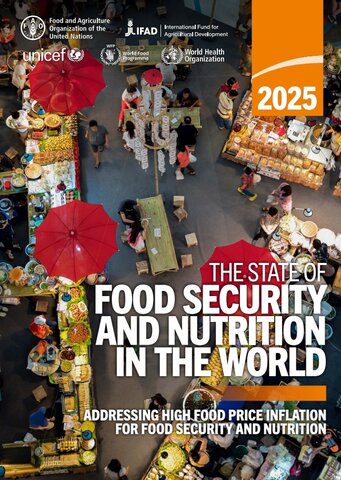
- 30 Jul 2025
In News:
Hunger affected up to 720 million people worldwide in 2024 — around 8.2 per cent of the global population, while 2.3 billion people in the world were estimated to have been moderately or severely food insecure, according to the ‘State of Food and Nutrition in the World’ (SOFI) 2025.
Key Highlights:
- Released by: Jointly published by FAO, IFAD, UNICEF, WFP, and WHO.
- Purpose:
- Annual global assessment to monitor progress on Sustainable Development Goal (SDG) 2:
- Target 2.1: End hunger and ensure access to safe, nutritious food.
- Target 2.2: End all forms of malnutrition.
Key Global Findings (2024 Data)
- Chronic Hunger:
- 720 million people (approx. 8.2% of global population) suffered from chronic hunger in 2024.
- Although lower than 8.5% (2023) and 8.7% (2022), it remains above pre-pandemic (2015) levels.
- 96 million more people are hungry now than in 2015.
- Food Insecurity:
- 2.3 billion people were moderately or severely food insecure in 2024.
- This is 335 million more than in 2019 (pre-COVID) and 683 million more than in 2015.
- Regional Distribution:
- Asia: 323 million undernourished (highest in absolute numbers).
- Africa: 307 million (highest prevalence, over 20% of population).
- Latin America & Caribbean: 34 million.
- Trends & Progress:
- Modest improvements in Southeast Asia, Southern Asia, and South America.
- Worsening hunger in parts of Africa and Western Asia due to conflict and climate stress.
Projections for 2030
- By 2030, 512 million people (6% of global population) may remain chronically undernourished.
- A decline of only 65 million since 2015, far short of the Zero Hunger target.
- 60% of these undernourished people are projected to be in Africa, with 17.6% prevalence.
India-Specific Insights
- Nutritional Affordability:
- 6% of Indians cannot afford a healthy diet despite food surplus.
- Urban areas show improvement due to post-pandemic income recovery.
- Rural areas face continued hardship due to PDS inefficiencies and price volatility.
- Child Malnutrition:
- High rates of stunting and wasting persist.
- Micronutrient deficiencies (hidden hunger) are common due to cereal-heavy diets lacking diversity.
- Policy Recommendations:
- Strengthen inclusion of millets, pulses, and fortified foods in public nutrition schemes.
- Address regional and demographic disparities through targeted interventions.
Major Drivers of Food Insecurity
- Post-COVID Aftermath: Reversed a decade of gains in global food security.
- Climate Events: Floods, droughts, and heatwaves have disrupted food systems.
- Conflicts & Wars: Ongoing wars (e.g. Ukraine) have triggered food price inflation and supply disruptions.
- Inflation:
- Since 2020, food price inflation has outpaced general inflation globally.
- Disproportionately affects low-income and vulnerable populations.
SOFI 2025: Recommendations
- Protect vulnerable populations via targeted fiscal support.
- Align macroeconomic policies to stabilize food markets.
- Invest in resilient agrifood systems and nutrition-sensitive agriculture.
- Strengthen food and nutrition data systems for informed policymaking.
- Promote dietary diversity and nutrition education.
SDG Context & Governance
- SDG 2 (Zero Hunger) is among the 17 UN Sustainable Development Goals adopted in 2015.
- These are non-binding, but serve as guiding principles for national policy and international cooperation.
- The SOFI report tracks progress annually against Targets 2.1 & 2.2.
- With only 5 years left to 2030, the current pace is inadequate for achieving global food and nutrition targets.
Deep Brain Stimulation (DBS)
- 29 Jul 2025
In News:
Over 1.6 lakh individuals globally have benefited from Deep Brain Stimulation (DBS)—a cutting-edge neurological procedure designed to manage complex brain disorders.
What is Deep Brain Stimulation?
DBS is a neurosurgical intervention wherein electrodes are surgically implanted into precise regions of the brain. These electrodes are connected via insulated wires to a pulse generator (similar to a pacemaker), typically placed under the skin near the collarbone.
The device delivers regulated electrical signals to targeted brain circuits. This helps modulate abnormal neural activity or restore disrupted brain function caused by neurological or psychiatric conditions.
How Does It Work?
- The implanted system sends mild, continuous electrical pulses to specific brain areas.
- These pulses help in stabilizing erratic electrical signals, which are often responsible for motor and cognitive dysfunctions.
- The stimulation does not destroy brain tissue and can be adjusted or turned off, offering reversibility unlike traditional ablative surgeries.
Clinical Applications of DBS
DBS has been widely adopted for treating movement disorders, especially when medications become ineffective:
- Parkinson’s Disease
- Essential Tremor
- Dystonia
Beyond motor disorders, DBS has received regulatory approval for use in certain psychiatric illnesses, such as: Obsessive-Compulsive Disorder (OCD)
Research is ongoing to explore its efficacy in conditions like:
- Severe Depression
- Epilepsy
Benefits of DBS
- Reversible and adjustable intervention
- Helps reduce motor symptoms such as tremors, stiffness, and rigidity
- Aims to normalize brain circuit functions at both micro (cellular) and macro (network) levels
- Offers hope in cases resistant to standard pharmacological therapies
Exercise Bold Kurukshetra 2025
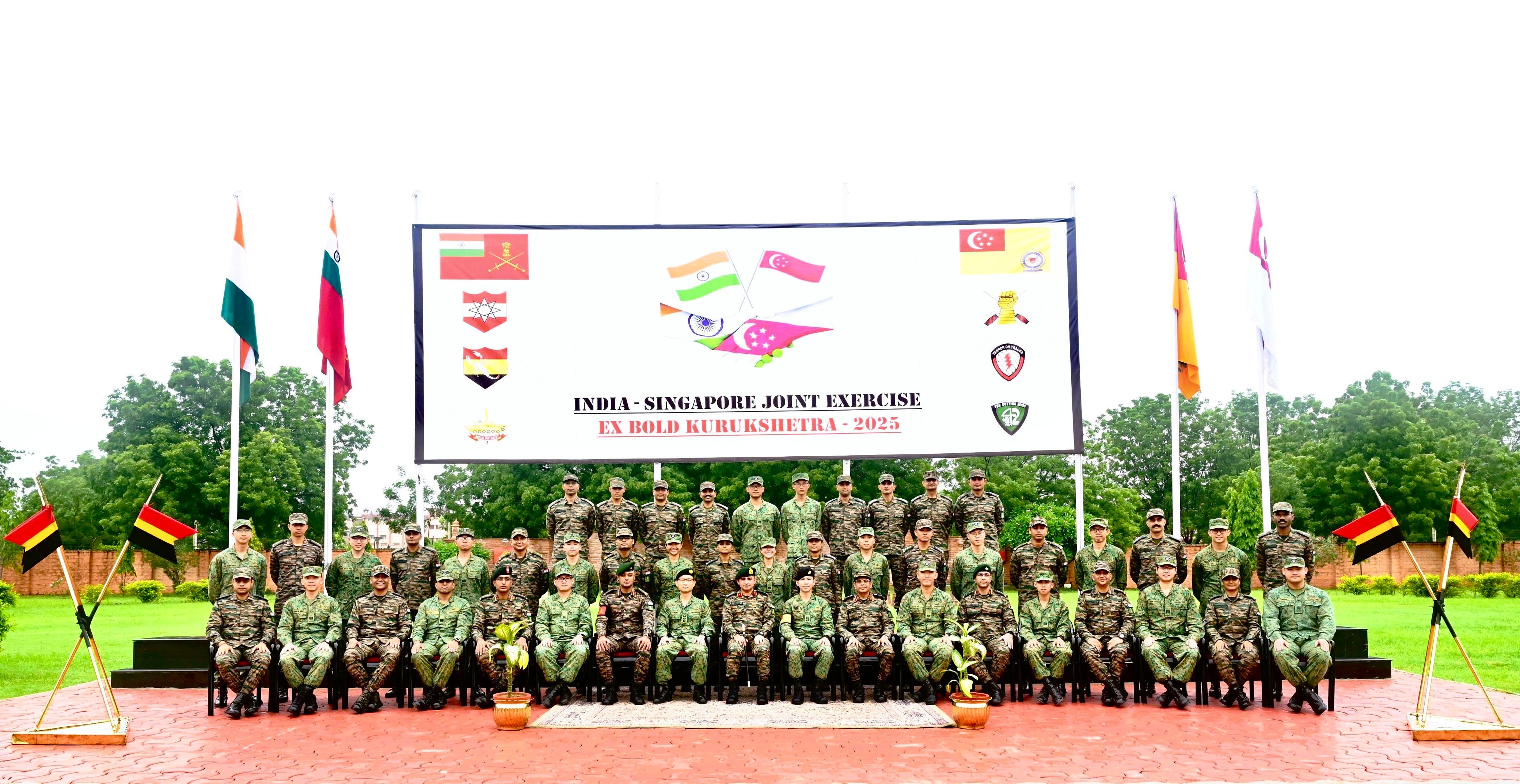
- 28 Jul 2025
In News:
The 14th edition of Exercise Bold Kurukshetra was commenced in Jodhpur, Rajasthan, reinforcing India–Singapore military ties. This bilateral military exercise is a key component of both countries’ growing defence cooperation.
About Exercise Bold Kurukshetra:
|
Feature |
Description |
|
Type |
Bilateral joint military exercise |
|
First Initiated |
2005 |
|
Edition |
14th edition (2025) |
|
Location (2025) |
Jodhpur, Rajasthan |
|
Duration |
28 July – 4 August 2025 |
|
Format |
Tabletop Exercise and Computer-Based Wargame |
|
Objective |
Enhance interoperability, validate mechanised warfare tactics, and simulate UN peacekeeping operations |
Participating Contingents:
|
Country |
Unit/Regiment |
|
India |
Mechanised Infantry Regiment |
|
Singapore |
42nd Armoured Regiment, 4th Singapore Armoured Brigade |
Key Features:
- Mechanised Warfare Focus: Validates joint operational tactics in modern armoured and mechanised operations.
- UN Mandate Simulation: Exercises conducted under simulated Chapter VII of the UN Charter, preparing both armies for peacekeeping and peace enforcement missions.
- Ceremonial Traditions: Enhances military camaraderie through shared symbolism and operational command handovers.
- Equipment Display: The exercise concludes with a display of Indian Army equipment, highlighting India's indigenous defence capabilities.
Strategic Significance:
|
Domain |
Contribution |
|
Defence Diplomacy |
Deepens bilateral military cooperation with Singapore |
|
Indo-Pacific Stability |
Enhances India’s strategic role in maintaining peace in the Indo-Pacific |
|
UN Peacekeeping |
Builds joint operational readiness for multinational UN-mandated missions |
|
Capacity Building |
Boosts joint planning and execution skills for mechanised combat environments |
Sohrai Art of Jharkhand
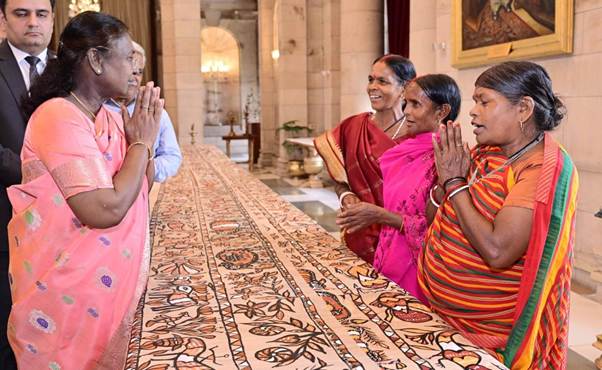
- 28 Jul 2025
In News:
Sohrai Art from Jharkhand was prominently showcased during Kala Utsav 2025 held at Rashtrapati Bhavan, where President Droupadi Murmu hailed it as reflecting the “soul of India.” The event marked a significant national recognition for this traditional tribal art.
About Sohrai Art:
|
Aspect |
Details |
|
Tribal Origins |
Practised by Santhal, Munda, and Oraon tribes in Jharkhand. |
|
Region |
Predominantly in Hazaribagh, Santhal Parganas, and parts of eastern Bihar. |
|
Occasion |
Ritual wall-painting during Diwali and harvest festivals. |
|
Purpose |
Thanksgiving for livestock and land fertility; linked to agrarian rituals and spiritual ecology. |
|
Artists |
Traditionally women; passed down through generations orally and practically. |
Key Features of Sohrai Art:
- Motifs: Stylized animals, birds, trees, and rural life, symbolizing harmony with nature.
- Materials: Uses natural pigments such as red ochre, white kaolin, yellow clay, and black manganese.
- Tools: Made with bamboo twigs, chewed sticks, and cloth instead of synthetic brushes.
- Cultural Essence: Embodies a blend of mythology, agrarian life, womanhood, and sustainability.
Kala Utsav 2025: National Recognition
- Held at Rashtrapati Bhavan as part of the Artists in Residence Programme.
- Ten tribal artists from Hazaribagh showcased their work to a national audience.
- President Murmu lauded the art as a symbol of India’s cultural depth and ecological consciousness.
Institutional Support: IGNCA’s Role
- Indira Gandhi National Centre for the Arts (IGNCA) and its Regional Centre in Ranchi coordinated artist participation.
- IGNCA continues to promote indigenous art forms, ensuring cultural preservation and artist recognition.
Cultural and Policy Relevance:
- Art & Culture: Highlights India’s rich tribal and folk heritage.
- Women Empowerment: Female-centric art practice promoting rural livelihoods.
- Sustainable Development: Use of eco-friendly materials and community-led traditions.
- Tribal Development Schemes: Aligns with objectives of schemes like TRIFED, GI tagging, and cultural promotion under Tribal Affairs Ministry.
Environmental Flow (E-Flow) in Indian Rivers
- 28 Jul 2025
In News:
Union Jal Shakti Minister Shri C.R. Patil recently chaired a crucial meeting focused on the Environmental Flow (E-Flow) of the Ganga River and its tributaries, with particular attention to the Yamuna River. This initiative is a part of the broader effort to ensure the ecological sustainability of India’s river systems.
What is Environmental Flow (E-Flow)?
Environmental Flow refers to the quantity, timing, and quality of water flow necessary to sustain freshwater ecosystems and the livelihoods dependent on them. It ensures that rivers maintain their ecological integrity, supporting aquatic life, estuarine health, and human usage in a sustainable manner.
Why is E-Flow Important?
- Maintains ecological balance in rivers and estuaries.
- Supports aquatic biodiversity, especially key fish species.
- Provides long-term ecological and economic benefits.
- Balances human needs and environmental sustainability, especially in overexploited river basins.
Challenges in Maintaining E-Flow:
- Construction of dams and barrages.
- Pollution and urban encroachments.
- Over-extraction of water for agriculture and industry.
These interventions disrupt natural flow patterns, threatening riverine ecosystems and dependent communities.
Government Initiatives and Studies:
Environmental Flow Notification (2018):
- Introduced by the government to regulate minimum required flows in the Ganga. However, a review of its impact is now being undertaken to determine its effectiveness and the need for improvements.
Recent Meeting Outcomes:
- Emphasis on strengthening the e-flow framework, especially for the Yamuna River, which faces severe pollution and over-extraction issues.
- Need for a robust, inclusive, and scientific approach to water management.
Studies Approved Under National Mission for Clean Ganga (NMCG):
|
Institution |
Rivers/Sub-Basins Assigned |
|
NIH Roorkee |
Chambal, Son, Damodar |
|
IIT Roorkee |
Ghaghara, Gomti |
|
IIT Kanpur |
Kosi, Gandak, Mahananda |
These studies aim to assess current flow conditions and recommend sustainable flow levels.
Way Forward:
- Expedite assessments under NMCG and ensure multi-stakeholder participation.
- Develop comprehensive water flow strategies for heavily impacted rivers like the Yamuna.
- Strengthen decision-making frameworks to balance ecological and human needs.
ICJ Declares Clean Environment a Human Right
- 27 Jul 2025
In News:
In a historic advisory opinion delivered on 23rd July 2025, the International Court of Justice (ICJ) recognized the right to a clean, healthy, and sustainable environment as a fundamental human right. The opinion was issued at the request of the UN General Assembly (2023) following lobbying by Vanuatu and supported by over 130 countries, mainly small island developing states (SIDS) vulnerable to climate change.
Key Legal Questions Addressed:
- What are states’ obligations under international law to mitigate climate change?
- What are the legal consequences of failing to act on climate commitments?
Major Highlights of the ICJ Advisory Opinion:
1. Environment as a Human Right
- The Court affirmed that access to a clean, healthy, and sustainable environment is inherent to the enjoyment of other human rights.
- Based on customary international law, UNGA Resolution 76/300 (2022), and international human rights treaties.
2. Binding Legal Duties
- States are bound under UNFCCC, Kyoto Protocol, and Paris Agreement to:
- Implement mitigation and adaptation policies.
- Submit and update Nationally Determined Contributions (NDCs).
- Facilitate technology transfer and climate finance.
3. Due Diligence and Liability
- States must prevent significant transboundary environmental harm and regulate both public and private actors (e.g., fossil fuel companies).
- Failure to act amounts to an internationally wrongful act, triggering:
- Cessation,
- Guarantees of non-repetition,
- Compensation or restitution.
4. Historical Emissions & Responsibility
- The ICJ accepted that cumulative emissions can be legally attributed to specific states.
- Supports legal claims for reparations and accountability based on historic contributions to climate change.
5. Climate Obligations as Erga Omnes
- These duties are owed to the entire international community.
- Any state can seek enforcement, regardless of direct injury.
6. Scientific Attribution Accepted
- Climate science was admitted as legal evidence.
- Allows courts to establish causal links between emissions and environmental harm.
Geopolitical & Legal Implications:
- Empowers SIDS and developing nations in climate negotiations.
- Opens doors to domestic and international litigation based on environmental rights.
- Highlights inadequacy of current global agreements in ensuring timely climate action.
- Major emitters like USA and Russia have resisted legally binding obligations through courts.
Relevance for India:
- Reinforces Article 21 (Right to Life) and Article 48A (Protection of Environment) of the Indian Constitution.
- Can influence Indian courts and tribunals (e.g., NGT, Supreme Court) in:
- Air and water pollution cases,
- Waste management,
- Climate adaptation litigation.
This ruling marks a critical shift in international environmental law, signaling greater legal accountability for climate action and strengthening the legal foundation for future climate justice claims.
National Cooperation Policy 2025
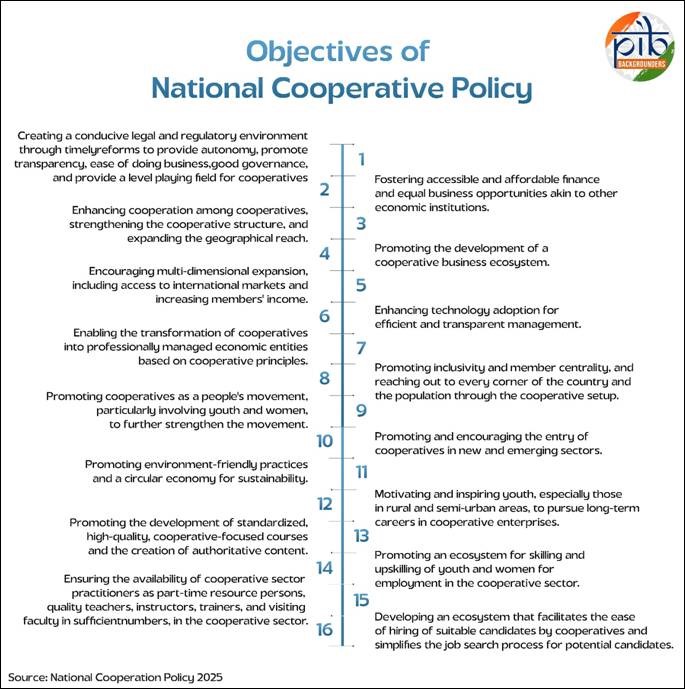
- 27 Jul 2025
In News:
- The National Cooperation Policy (NCP) 2025 marks a strategic roadmap for revitalizing India’s cooperative sector to meet the nation’s goal of becoming “Viksit” by 2047.
- Rooted in the ethos of Sahkar-se-Samriddhi, this policy aims to build on the unique strengths of India’s cooperative tradition, promote economic democratization, and uplift rural economies through collective participation.
- Mission: To create an enabling legal, economic, and institutional framework that will strengthen and deepen the cooperative movement at the grassroots level and facilitate the transformation of cooperative enterprises into professionally managed, transparent, technology-enabled, vibrant, and responsive economic entities to support production by the masses.
What is a Cooperative?
A cooperative is an autonomous association of persons, united voluntarily to meet their common economic, social, and cultural needs and aspirations through a jointly owned and democratically member-controlled enterprise.
Difference between Credit & Non-Credit Cooperatives
|
Aspect |
Credit Cooperatives |
Non-Credit Cooperatives |
|
Function |
Provide financial services like loans and savings |
Provide goods/services like farming inputs, housing, etc. |
|
Examples |
PACS, Urban Cooperative Banks |
Dairy, Marketing, Consumer, Housing Cooperatives |
The Indian cooperative movement has been the flag bearer of a participatory, people-led development model aimed at socio-economic upliftment at the grassroots level for more than a century.
Strategic Pillars:
The policy is structured around six mission pillars and 16 objectives:
- Strengthening the Foundation – Legal reforms, better governance, access to finance, digitalization.
- Promoting Vibrancy – Creating business ecosystems, expanding exports and rural clusters.
- Making Cooperatives Future-Ready – Technology integration, professional management, cooperative stack.
- Promoting Inclusivity and Deepening Reach – Promoting cooperative-led inclusive development and cooperatives as a people’s movement.
- Entering New and Emerging Sectors – Biogas, clean energy, warehousing, healthcare, etc.
- Shaping Young Generation for Cooperative Growth – Courses, training, employment exchanges.
Key Highlights of the Policy
Legislative and Institutional Reforms
- Encourage States to amend cooperative laws (Cooperative Societies Acts and Rules) to enhance transparency, autonomy and the ease of doing business.
- Promote digitalization of registrar offices and real-time cooperative databases.
- Revive sick cooperatives with institutional mechanisms.
Financial Empowerment
- Preserve and promote the three-tier Primary Agriculture Credit Societies - District Central Cooperative Bank - State Cooperative Bank credit structure.
- Promote cooperative banks and umbrella organizations (like National Urban Cooperative Finance & Development Corporation).
- Enable cooperative banks to handle government businesses.
Business Ecosystem Development
- Model cooperative villages with multipurpose PACS as growth engines.
- Encouraging States/UTs to develop at least one model cooperative village.
- Develop rural economic clusters (e.g., honey, spices, tea).
- Support branding under the ‘Bharat’ brand.
Model Cooperative Village
A Model Cooperative Village is a self-reliant rural unit developed through a cooperative-led, household-focused approach to enhance livelihoods and productivity.
Future-Readiness & Technology
- Develop a national ‘Cooperative Stack’ integrating with Agri-stack and databases.
- Promote Open Network for Digital Commerce (ONDC) and Government e-marketplace (GeM) platform integration.
- Encourage research and innovation through cooperative incubators and Centres of Excellence.
Open Network for Digital Commerce (ONDC)
The ONDC is a transformative initiative by the Department for Promotion of Industry and Internal Trade (DPIIT), Ministry of Commerce, Government of India aimed at democratizing digital commerce. Launched in April 2022, ONDC aims at promoting open networks for all aspects of exchange of goods and services over digital or electronic networks.
Government e-Marketplace (GeM)
GeM is an online platform for public procurement in India. The initiative was launched on August 09, 2016 by the Ministry of Commerce and Industry with the objective to create an open and transparent procurement platform for government buyers.
Inclusivity Measures
- Active participation of youth, women, SC/STs, and differently-abled in cooperatives.
- Model bye-laws for gender representation and transparent governance.
- Cooperative awareness campaigns in schools and colleges.
Model Bye-Laws
The Model Bye-laws are simply a representative sample and a guide to frame bye-laws of a multi-state cooperative society.
Sectoral Diversification
- Promote cooperatives in new and emerging sectors such as:
- Renewable energy,
- Waste management,
- Health and education,
- Mobile-based aggregator services (e.g., for plumbers, taxi drivers),
- Organic and natural farming,
- Biogas and ethanol production, etc.
Youth-Oriented Capacity Building
- Develop cooperative-focused courses in higher education institutions (HEIs).
- Build a national digital cooperative employment exchange.
- Promote financial and digital literacy among youth.
- Recruit quality cooperative teachers and resource persons.
Implementation and Monitoring
A robust multi-tier implementation structure is proposed:
- Implementation Cell within the Ministry of Cooperation with technical Project Management Unit support for effective and timely implementation of the policy.
- National Steering Committee on Cooperation Policy chaired by the Union Cooperation Minister will be constituted for overall guidance, inter-ministerial coordination, periodic policy review, etc.
- Policy Implementation and Monitoring Committee headed by the Union Cooperation Secretary for coordination with States, troubleshooting implementation bottlenecks, periodic monitoring and evaluation, etc.
India Skills Accelerator Initiative
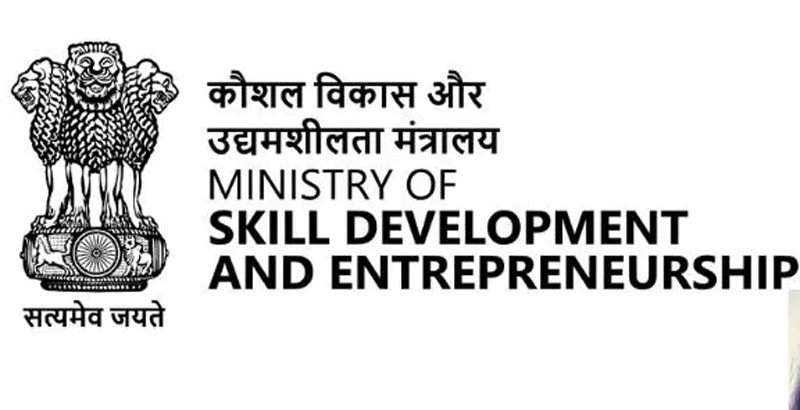
- 27 Jul 2025
In News:
The Ministry of Skill Development and Entrepreneurship (MSDE), in collaboration with the World Economic Forum (WEF), deliberated on the “India Skills Accelerator” initiative.
Key Highlights:
- Launched by: Ministry of Skill Development and Entrepreneurship (MSDE)
- Collaborating Partner: World Economic Forum (WEF)
- Announced on: 8th April 2025 during a high-level roundtable at Kaushal Bhawan, New Delhi
- Objective: To strengthen India's skilling ecosystem through inclusive upskilling and reskilling, enhanced government-industry collaboration, and investment in lifelong learning, particularly in high-growth sectors such as Artificial Intelligence, robotics, and clean energy.
- Key Features:
- Public-Private Collaboration: Structured as a national platform bringing together government and private sector stakeholders; notably, 2 of the 4 co-chairs are from the private sector.
- Focus Areas:
- Promotes scalable and adaptive training models
- Facilitates agile career transitions for the workforce
- Aligns education and training with evolving industry demands
- Strategic Approach:
- Raising awareness and changing perceptions about future skills
- Encouraging cross-sectoral collaboration and sharing of best practices
- Reforming institutional frameworks to support a responsive and dynamic skilling system
- Significance: The initiative is aligned with India’s goal of building a future-ready workforce by addressing skill mismatches and preparing youth for rapidly transforming industries. It contributes to the broader national missions like Skill India, Digital India, and Make in India.
AI for India 2.0 Programme
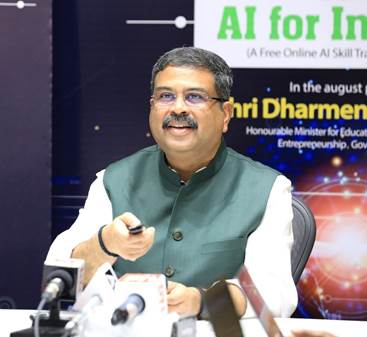
- 27 Jul 2025
In News:
The Minister of State (Independent Charge), Ministry of Skill Development and Entrepreneurship (MSDE), informed the Rajya Sabha about AI for India 2.0 Programme.
Key Highlights:
- Launched: 15th July 2023, on the occasion of World Youth Skills Day
- Implementing Bodies: Joint initiative by Skill India and GUVI (an ed-tech platform incubated by IIT Madras and IIM Ahmedabad)
- Accreditation: Recognized by NCVET and IIT Madras
- Objective: To democratize access to emerging technologies like Artificial Intelligence (AI) and Machine Learning (ML), especially among youth from non-English-speaking and rural backgrounds.
- Key Features:
- Free Online Training: Offers no-cost courses in AI and ML.
- Vernacular Focus: Educational content provided in 9 Indian languages including Hindi, Telugu, and Kannada, enhancing accessibility for non-English speakers.
- Target Audience: College students, recent graduates, and early-career professionals, with a focus on learners from rural regions.
- Course Content: Includes expert-curated Python programming courses designed to enhance technical proficiency.
- National Recognition: The programme is nationally accredited, ensuring quality and credibility.
- Significance: This initiative aims to empower the Indian youth by equipping them with industry-relevant digital skills, thus aligning with the broader goals of digital inclusion and skilling under Digital India and Skill India missions.
National Sports Governance Bill 2025
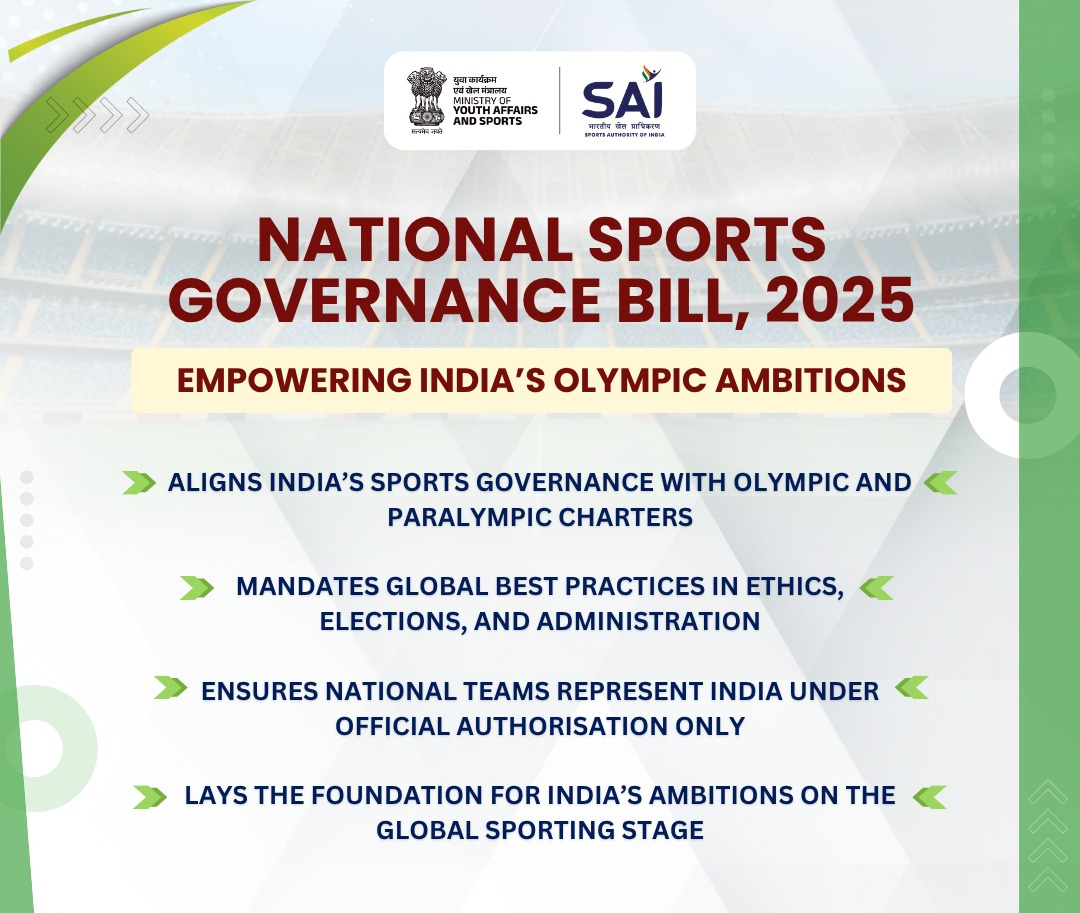
- 26 Jul 2025
In News:
The National Sports Governance Bill, 2025, introduced in the Lok Sabha, marks a significant legislative effort to restructure and reform India's sports administration framework. It seeks to replace the non-binding National Sports Code of 2011 with a statutory, enforceable law that prioritizes transparency, athlete welfare, and institutional accountability.
Key Objectives of the Bill
- Establish a uniform governance system across all sports federations.
- Legally regulate bodies like the Board of Control for Cricket in India (BCCI).
- Align Indian sports governance with international standards, particularly ahead of India’s 2036 Olympic bid.
- Introduce dedicated institutions for oversight, dispute resolution, and electoral transparency.
Major Structural Changes
1. Statutory Institutions Established
|
Institution |
Function |
|
National Sports Board (NSB) |
Recognition, funding eligibility, ethics compliance, and oversight of NSFs. |
|
National Sports Tribunal |
Dispute resolution (e.g., selection, elections, governance conflicts). |
|
National Sports Election Panel |
Ensures free, fair, and independent elections of sports bodies. |
Governance Reforms in National Sports Bodies
- Recognition & Regulation: All National Sports Federations (NSFs), including the BCCI, must seek annual recognition from the NSB.
- Affiliation: National bodies must have aligned state and district units, and comply with international federations' statutes.
- Code of Ethics: Mandatory for members, athletes, coaches, sponsors, and officials.
- Grievance Redressal: Internal mechanisms must be instituted by each federation.
Administrative Structure of National Bodies
- General Body: Equal representation from all affiliates and ex-officio members.
- Executive Committee: Maximum 15 members, mandatory inclusion of at least 4 women and 2 elite athletes.
- Age Limit: Officials must be aged 25–70 years (exceptions up to 75 years if permitted by international rules).
- Term Limit: Max three consecutive terms of four years in the same or different posts, with a cooling-off period.
Role of the National Sports Board (NSB)
The NSB acts as a central regulatory authority, similar to SEBI in financial markets.
Powers and Functions:
- Granting/suspending/canceling recognition of sports bodies.
- Investigating misuse of funds or violation of athlete welfare norms.
- Issuing guidelines for ethics, governance, and international compliance.
- Forming ad-hoc bodies in case of international de-recognition.
Composition: Chairperson and members with expertise in sports governance, law, and public administration. Appointed by the central government through a search-cum-selection committee.
National Sports Tribunal
A quasi-judicial body to resolve disputes involving federations, athletes, and administration.
Composition:
- Chairperson: Sitting/former Supreme Court Judge or Chief Justice of a High Court.
- Two expert members from sports, law, or public administration.
Appointed by: A committee comprising the Chief Justice of India (or nominee), the Law Secretary, and the Sports Secretary.
Appeals: Lie directly to the Supreme Court, except where international regulations mandate the Court of Arbitration for Sport (CAS) in Switzerland.
Jurisdiction Excludes: Disputes related to international sports events and internal matters of global sports bodies.
Electoral Oversight
A National Sports Election Panel will be constituted, comprising:
- Former Election Commissioners of India
- Former Chief Electoral Officers and Deputy Election Commissioners
Purpose:
- Supervise elections of executive committees of national federations.
- Ensure electoral integrity at the state and district levels via affiliate panels.
Legal Enforceability vs. Sports Code 2011
|
Parameter |
Sports Code 2011 |
Governance Bill 2025 |
|
Legal Status |
Advisory guidelines |
Statutory law |
|
Enforceability |
Non-binding |
Legally enforceable |
|
Gender/Athlete Representation |
Not mandated |
4 women & 2 elite athletes required |
|
Dispute Resolution |
Ministry-driven |
National Sports Tribunal |
|
BCCI Regulation |
Outside purview |
Brought under framework |
|
Election Oversight |
Ministry oversight |
Independent election panel |
|
RTI Applicability |
Exempt (BCCI) |
Mandatory for recognized bodies |
Bringing BCCI Under the Legal Framework
Historically resisting regulation, the BCCI will now be required to:
- Register annually with the NSB.
- Submit to the National Sports Tribunal for disputes.
- Comply with RTI Act provisions, if it seeks government recognition and funding.
This change is significant as cricket is now part of the 2028 Los Angeles Olympics, making BCCI subject to international governance norms under the Olympic Charter.
Provision for Exemptions
The central government may exempt specific sports bodies from certain provisions of the Bill, in the public interest or for the promotion of specific sports disciplines.
Parallel Legislation: Anti-Doping Amendment
The National Anti-Doping (Amendment) Bill, 2025 was also introduced, addressing World Anti-Doping Agency (WADA) concerns. It:
- Retains the National Board for Anti-Doping, but strips it of oversight over NADA.
- Restores NADA’s independence, aligning Indian anti-doping efforts with international norms.
Henley Passport Index 2025
- 26 Jul 2025
In News:
The Henley Passport Index 2025 reveals significant shifts in global mobility, highlighting increased visa-free access for citizens worldwide. India has made notable progress in the latest rankings, climbing eight places to reach the 77th position, up from 85th in 2024. Indian passport holders can now access 59 countries without a prior visa.
What is the Henley Passport Index?
The Henley Passport Index is a global ranking of passports based on the number of destinations their holders can enter without a visa or with visa-on-arrival. It is compiled by Henley & Partners using data from the International Air Transport Association (IATA). The index, started in 2006, now covers 199 passports and 227 travel destinations.
India’s Passport Performance:
- Current Rank (2025): 77th
- Visa-Free Access: 59 countries
- Previous Rank (2024): 85th
- Lowest Rank: 90th in 2021
- Best Rank: 71st in 2006
India's improved standing reflects enhanced global engagement and evolving diplomatic relations. However, it still trails far behind leading Asian and Western nations in terms of travel freedom.
Top 10 Most Powerful Passports (2025):
- Singapore – 193 visa-free destinations
- Japan, South Korea – 190 destinations
- Germany, France, Italy, Spain, Ireland, Denmark, Finland – 189 destinations
- Sweden, Austria, Belgium, Portugal, Netherlands, Luxembourg, Norway – 188 destinations
- Greece, Switzerland, New Zealand – 187 destinations
- United Kingdom – 186 destinations
- Australia, Czechia, Poland, Malta, Hungary – 185 destinations
- Canada, Estonia, United Arab Emirates (UAE) – 184 destinations
- Croatia, Latvia, Slovakia, Slovenia – 183 destinations
- United States, Iceland, Lithuania – 182 destinations
Note: The UAE is the only significant climber in the top 10, jumping from 42nd to 8th over the past decade.
Bottom 10 Least Powerful Passports (2025):
99. Afghanistan – 25 destinations
98. Syria – 27 destinations
97. Iraq – 30 destinations
96. Pakistan, Yemen, Somalia – 32 destinations
95. Libya, Nepal – 38 destinations
94. Bangladesh, Eritrea, Palestinian Territories – 39 destinations
93. North Korea – 40 destinations
92. Sudan – 41 destinations
91. Sri Lanka – 42 destinations
Global Trends in Passport Power:
- The global average of visa-free destinations has risen from 58 in 2006 to 109 in 2025, indicating increasing global mobility.
- Asian dominance continues, with Singapore, Japan, and South Korea topping the list.
- European Union countries maintain strong positions, reflecting widespread bilateral agreements.
- The United States and United Kingdom, once top-ranking, have seen a decline in influence. The US ranks 10th (182 destinations), while the UK stands at 6th (186 destinations).
- Afghanistan remains at the bottom of the list, with access to just 25 countries, highlighting stark global disparities in travel freedom.
Significance:
- The Henley Passport Index reflects soft power, diplomatic ties, and economic standing of nations.
- India's rising passport strength indicates improved bilateral relations, trade diplomacy, and international mobility.
National Critical Mineral Mission

- 26 Jul 2025
In News:
The National Critical Mineral Mission (NCMM), launched by the Government of India in 2025, represents a strategic initiative to secure India's access to essential critical minerals, vital for clean energy, advanced electronics, defence, and emerging technologies. It aims to address India’s dependence on imports, strengthen domestic capacity, and build resilient supply chains.
What are Critical Minerals?
Critical minerals are those essential to economic development and national security, often marked by limited domestic availability and a high risk of supply disruption. These include lithium, cobalt, nickel, rare earth elements (REEs), graphite, and silicon, which are central to electric vehicles (EVs), solar panels, semiconductors, wind turbines, and defence applications.
Why NCMM? Strategic Context
- Energy Transition: India is 100% import-dependent for lithium, cobalt, and rare earths—crucial for EVs and energy storage.
- Tech Sovereignty: Strategic autonomy in AI, defence, and semiconductors depends on secure mineral access.
- Geopolitical Concerns: China controls 70–90% of global critical mineral processing. Diversifying supply chains is essential.
- Industrial Push: Schemes like PLI for EVs, electronics, and solar energy require a reliable mineral base.
- Climate Commitments: India aims to reduce emissions intensity by 45% (from 2005 levels) and reach net-zero by 2070.
Components of the National Critical Mineral Mission (NCMM)
Key Features of NCMM
1. Legal and Policy Framework
- Enacted under the Ministry of Mines in 2025.
- 30 critical minerals identified (24 inserted into Part D of the First Schedule of the MMDR Act, 1957).
- The Centre now has exclusive authority to auction mining leases for these minerals.
2. Domestic and Foreign Sourcing Targets (2024–2030)
|
Objective |
Target |
|
Domestic Exploration Projects |
1,200 |
|
Overseas Projects by PSUs |
26 |
|
Overseas Projects by Private Sector |
24 |
|
Recycling Incentive Scheme (in kilotons) |
400 |
|
Strategic Mineral Stockpile |
5 |
3. Capacity Building and Innovation
|
Objective |
Target |
|
Patents in Critical Mineral Tech |
1,000 |
|
Workforce Trained |
10,000 |
|
Processing Parks |
4 |
|
Centres of Excellence |
3 |
Sectoral Applications of Critical Minerals
- Solar Energy: Silicon, tellurium, indium, and gallium in photovoltaic cells; India’s solar capacity is 64 GW.
- Wind Energy: Neodymium and dysprosium in turbine magnets; target capacity: 140 GW by 2030.
- EVs: Lithium, nickel, cobalt in batteries; goal: 6–7 million EVs by 2024.
- Energy Storage: Lithium-ion battery storage systems; key for grid balancing and renewables.
Implementation Highlights
Exploration and Domestic Production
- 195 GSI projects launched in 2024–25, including 35 in Rajasthan.
- Over 100 mineral blocks identified for auction.
- Offshore exploration for polymetallic nodules (cobalt, REEs, nickel, manganese) underway.
- UNFC classification and MEMC Rules, 2015, guide the exploration methodology.
Asset Acquisition Abroad
- KABIL (Khanij Bidesh India Ltd):
- MoU with CAMYEN (Argentina) for lithium over 15,703 hectares.
- Ties with Australia for cobalt/lithium via Critical Mineral Office (CMO).
- Public–Private Partnership support via funding, MEA coordination, and guidelines for overseas investments.
Recycling and Circular Economy
- Incentives for mineral recovery from e-waste, fly ash, and tailings.
- Emphasis on building a formal recycling infrastructure.
- Current battery and electronics recycling sector is informal and lacks scale.
Processing and Midstream Infrastructure
- Development of dedicated Mineral Processing Parks.
- Encourage public–private partnerships and offer PLI-style incentives for refining technologies.
Challenges in India’s Critical Mineral Ecosystem
- High Import Dependence: 100% for lithium, cobalt, REEs.
- Underdeveloped Infrastructure: Lack of domestic refining, separation, and conversion capacity.
- Low Private Sector Participation: Technical and financial barriers deter participation.
- ESG Concerns: Mining zones often overlap with ecologically or tribally sensitive regions.
- Legal Bottlenecks: Environmental clearance delays due to weak ESG compliance.
- Informal Recycling Ecosystem: Fragmented, unregulated battery/e-waste recovery systems.
Strategic Roadmap Ahead
- Strengthen Exploration: Expand GSI capabilities; fund viability gap to attract investment.
- Diversify Global Sources: Engage in “friendshoring” with Australia, Argentina, U.S., etc.
- Build Midstream Capacity: Set up refining zones, mineral parks, and conversion units.
- Sustainable and Inclusive Mining: Implement ESG mandates and tribal welfare frameworks.
- Enhance Circular Economy: Provide tax breaks and subsidies for high-efficiency recovery systems.
Institutional Support
- IREL (India) Limited:
- Produces ilmenite, zircon, sillimanite, and rare earths.
- Operates Rare Earth Extraction Plant (Chatrapur, Odisha) and Refining Unit (Aluva, Kerala).
- Profitable PSU with ?14,625 million turnover (2021–22), including ?7,000 million exports.
Conclusion
India's National Critical Mineral Mission (NCMM) is pivotal for achieving strategic autonomy, industrial growth, and clean energy goals. By integrating domestic exploration, international partnerships, midstream processing, recycling, and regulatory reform, NCMM lays the foundation for a resilient and self-reliant mineral ecosystem. Its success is critical for India’s leadership in green technologies, manufacturing, and strategic geopolitics—making it a cornerstone initiative under Atmanirbhar Bharat and India's 21st-century industrial vision.
India–UK Comprehensive Economic and Trade Agreement (CETA)
- 26 Jul 2025
In News:
India and the United Kingdom signed the Comprehensive Economic and Trade Agreement (CETA) in July 2025, marking a landmark Free Trade Agreement (FTA) between India and a major developed economy. The agreement is part of the broader India–UK Vision 2035, aiming to strengthen bilateral ties across trade, technology, defence, climate, and education.
Key Features of CETA
1. Trade in Goods
- Zero-duty access for 99% of Indian exports to the UK, covering major sectors:
- Labour-intensive: textiles, leather, footwear, gems & jewellery, toys, marine products.
- High-growth: auto components, engineering goods, organic chemicals.
- Improved access for Indian agricultural products (tea, spices, coffee, fruits, meats) to UK’s $63.4 billion agri-market (dairy excluded).
2. Trade in Services
- First-of-its-kind comprehensive services commitment by the UK.
- Expands Indian access in: IT/ITeS, financial & legal services, architecture, education, telecom, consulting, and engineering.
3. Labour Mobility
- Liberalised visa norms for:
- Contractual Service Suppliers
- Intra-Corporate Transferees
- Independent Professionals (e.g. chefs, yoga instructors, musicians)
- Double Contribution Convention (DCC):
- Exempts Indian professionals and their employers from UK social security contributions for up to 3 years.
4. Inclusive Growth
- Benefits designed for MSMEs, women entrepreneurs, artisans, farmers, and startups.
- Provisions include:
- Dedicated SME contact points
- Digital trade facilitation
- Paperless customs
India–UK Vision 2035: 5 Strategic Pillars
1. Growth and Jobs
- Target: Double bilateral trade from USD 56 bn to USD 112 bn by 2030.
- Initiatives:
- New Bilateral Investment Treaty (BIT)
- UK–India Infrastructure Financing Bridge
- British International Investment (BII)
- Regulatory harmonisation in legal and financial services.
2. Technology and Innovation
- Focus Areas: AI, 6G, semiconductors, biotech, cybersecurity, biomaterials.
- Key Initiatives:
- Joint AI research centre
- India–UK Critical Minerals Guild
- Startup collaboration via incubators and biofoundries.
3. Defence and Security
- Launch of 10-Year Defence Industrial Roadmap: R&D in electric propulsion, underwater warfare, directed energy weapons.
- Deepening:
- 2+2 Ministerial Dialogue
- Military exercises, intelligence sharing
- Indian Ocean logistics cooperation
4. Climate and Clean Energy
- Areas of Collaboration: Offshore wind, small modular nuclear reactors (SMRs), carbon markets, blue carbon research.
- Joint commitment to:
- International Solar Alliance (ISA)
- One Sun One World One Grid (OSOWOG)
- Net Zero Innovation Partnership
5. Education and People-to-People Ties
- UK universities allowed to open campuses in India.
- Launch of dual degree programmes, mutual qualification recognition.
- Young Professionals Scheme for career mobility.
- Green Skills Partnership to bridge climate tech skill gaps.
Strategic Importance for India
|
Sector |
Impact |
|
Economy |
Enhances export potential, promotes Make in India, and attracts FDI. |
|
Employment |
Boosts jobs in textiles, IT, food processing, and engineering. |
|
Mobility |
Facilitates professional migration and global exposure. |
|
Technology |
Drives domestic innovation in AI, semiconductors, climate tech. |
|
Defence |
Supports self-reliance in high-tech military R&D. |
|
Climate Action |
Aids India’s Net Zero goals via access to green finance and clean energy tech. |
|
Global Positioning |
Strengthens India’s influence in WTO, UN, IMF, and other multilateral fora. |
U.S. withdraws from UNESCO for the third time
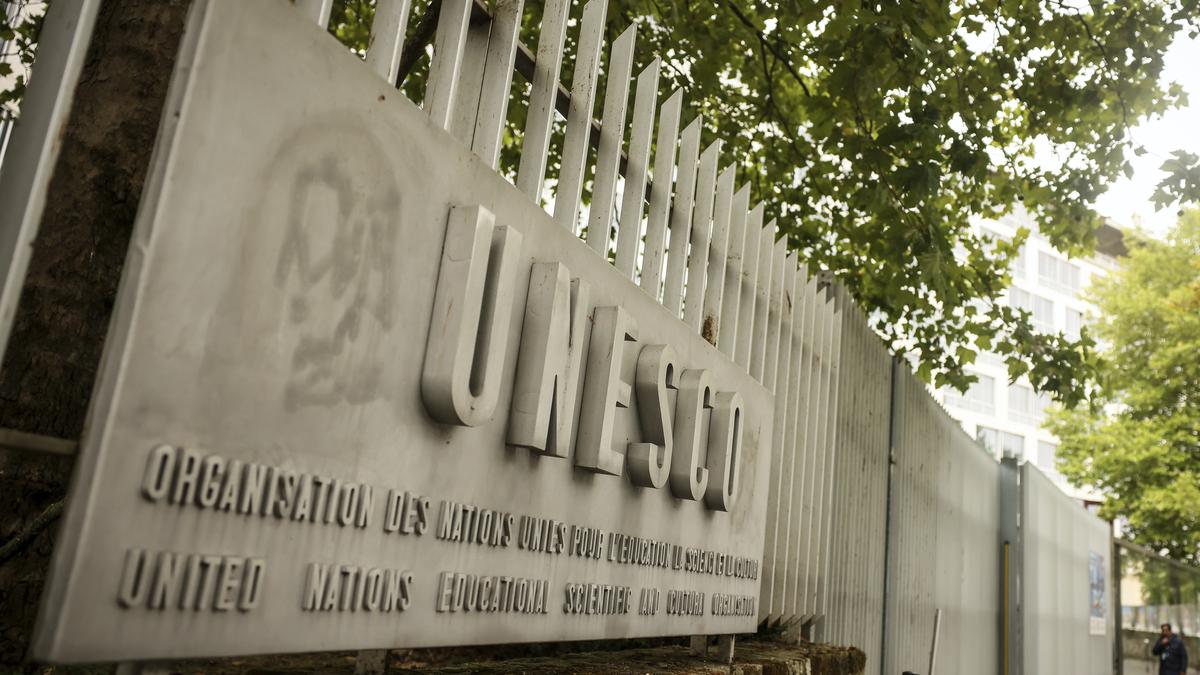
- 25 Jul 2025
In News:
In 2025, the United States announced its decision to withdraw from the UNESCO, citing perceived bias against Israel. This move comes just two years after rejoining the organization in 2023 and marks the third U.S. exit, and the second under the Trump administration.
What is UNESCO?
- Full Form: United Nations Educational, Scientific and Cultural Organization
- Founded: 16th November 1945
- Headquarters: Paris, France
- Membership: 194 Member States and 12 Associate Members
- India's Role: A founding member of UNESCO
Mandate and Key Functions
- Education: Promote inclusive and equitable lifelong learning (aligned with SDG 4)
- Culture: Safeguard tangible and intangible cultural heritage through tools like the World Heritage List
- Science: Advance climate science, AI ethics, and sustainable development
- Global Understanding: Foster mutual respect, peace, and international cooperation
Timeline of U.S. Exits from UNESCO
|
Year |
Administration |
Reason for Exit |
|
1984 |
Reagan |
Accusations of mismanagement and pro-Soviet bias |
|
2017 |
Trump (1st Term) |
Alleged anti-Israel bias after Palestine was accepted as a member in 2011 |
|
2025 |
Trump (2nd Term) |
Continued allegations of bias; exit scheduled by December 2026 |
- Rejoined: Under Biden Administration in 2023
Global Implications of U.S. Withdrawal
1. Financial Consequences
- The U.S. was a major contributor to UNESCO.
- Its exit leaves a budget deficit, affecting:
- Education initiatives
- Cultural heritage projects
- Climate and AI research
- Past example: U.S. and Israel froze funding after Palestine’s admission in 2011.
2. Geopolitical Rebalancing
- China’s influence may expand in UNESCO’s absence, potentially altering agendas and narratives.
- Risk of geopolitical polarization in multilateral agencies.
3. Weakening of Multilateralism
- Unpredictable U.S. engagement weakens global cooperation mechanisms.
- Undermines trust and support for UN agencies, especially in developing countries.
4. Impact on Science and Education
- Reduced backing for global programs in:
- STEM education for girls
- AI ethics frameworks
- Climate change awareness and mitigation
Implications for India
Opportunities
- Diplomatic leverage: Greater voice in shaping global agendas on education, AI, and heritage.
- Soft power expansion: Through advocacy for Indian culture and World Heritage nominations.
- South-South cooperation: Leadership in global education and sustainable development dialogue.
Challenges
- Funding constraints could affect:
- Ongoing Indian UNESCO projects (e.g., Nalanda, Sundarbans)
- Educational programs in rural/tribal regions
- Increased pressure on India to contribute more financially
- Rising Chinese influence could marginalize India’s strategic interests
Palna Scheme
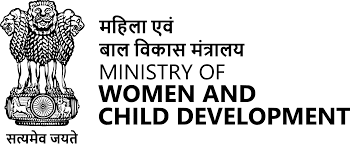
- 25 Jul 2025
In News
Launched by the Ministry of Women and Child Development (MoWCD) under the Samarthya vertical of Umbrella Mission Shakti, the Palna Scheme aims to provide safe, accessible, and quality day care (crèche) facilities for children aged 6 months to 6 years across all States and Union Territories, effective from 1st April 2022.
Key Features:
- Objective: To support working mothers by providing crèche services ensuring:
- Safety and well-being of children
- Nutritional support
- Early childhood care and cognitive development
- Health check-ups, growth monitoring, and immunization
- Target Beneficiaries: All children aged 6 months to 6 years. Services are irrespective of mothers' employment status, covering both organized and unorganized sectors.
- Types of Crèches:
- Standalone Crèches
- Anganwadi-cum-Crèches (AWCCs)
Anganwadi-cum-Crèche (AWCC) Model
- Utilizes existing Anganwadi Centres, the world’s largest public childcare infrastructure, to provide full-day childcare services.
- Ensures last-mile delivery of services in a safe and secure environment.
- Supports women’s workforce participation by relieving unpaid childcare burden.
Timings & Flexibility
- Crèches to operate for 26 days/month and 7.5 hours/day, with timings adapted to local needs.
- States/UTs may adjust timings under Standard Operating Procedures based on community work patterns.
Funding Pattern
|
Category |
Centre:State Funding Ratio |
|
General States |
60:40 |
|
North Eastern & Special Category States |
90:10 |
|
UTs with Legislature |
60:40 |
|
UTs without Legislature |
100% Central Assistance |
Integrated Services Offered
- Day care and sleeping facilities
- Early stimulation for children below 3 years
- Pre-school education for 3–6 years
- Supplementary nutrition (locally sourced)
- Growth monitoring, health check-ups & immunization
Implementation Status (As of July 2025)
- Total Envisioned AWCCs (FY 2022–26): 17,000
- AWCCs Approved by MoWCD (as of July 2025): 14,599
- Implemented based on proposals from States/UTs with cost-sharing as per applicable funding norms.
Significance
- Addresses the rising need for formal childcare due to:
- Increasing nuclear families
- Greater women’s participation in the workforce
- Migration, urbanization, and limited informal support structures
- Aligns with SDG 8 (Decent Work and Economic Growth) by formalizing care work and supporting inclusive economic participation.
Fungus-Resistant Pineapple
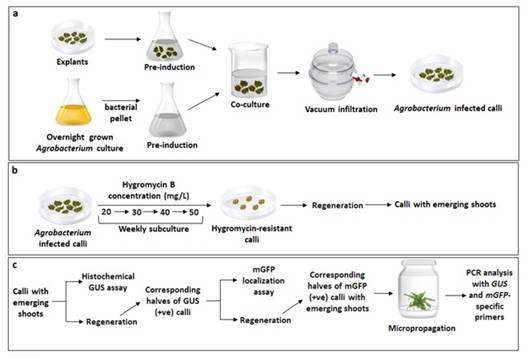
- 24 Jul 2025
In News:
- Pineapple (Ananas comosus L. Merr.), the most economically significant fruit of the Bromeliaceae family, plays a crucial role in nutrition and agriculture across tropical regions.
- In India, pineapple cultivation contributes significantly to rural livelihoods, particularly in northeastern and southern states. However, the productivity of this high-value fruit is severely impacted by Fusariosis, a destructive fungal disease caused by Fusarium moniliforme.
- A recent breakthrough by Indian scientists promises a potential game-changer in combating this challenge using indigenous genetic innovation.
Fusariosis
- Fusariosis is a devastating fungal infection that warps the stem, blackens the leaves, and rots the fruit internally, leading to heavy crop losses.
- Traditional breeding methods have struggled to provide effective resistance due to the rapid evolution of fungal pathogens. For farmers, this translates into unreliable harvests and financial instability.
The Biotechnological Solution: AcSERK3 Gene Overexpression
Researchers from the Bose Institute, an autonomous body under the Department of Science and Technology (DST), have successfully identified and overexpressed a gene in pineapple that significantly enhances resistance to Fusariosis.
- The gene, AcSERK3 (Somatic Embryogenesis Receptor Kinase 3), is part of the pineapple’s natural genome.
- It is known to regulate somatic embryogenesis and strengthen plant responses to biotic and abiotic stress.
- By genetically overexpressing this gene in pineapple plants, the researchers were able to trigger enhanced internal defence mechanisms.
- The transgenic lines exhibited increased production of stress-associated metabolites and antioxidant enzyme activity, enabling them to survive fungal attacks that severely damaged wild-type plants.
This is the first documented instance of overexpression of an indigenous pineapple gene to impart fungal disease tolerance while simultaneously improving regenerative capacity.
Significance of the Research
- The study, published in In Vitro Cellular & Developmental Biology – Plants, lays the foundation for developing multi-fungal tolerant pineapple varieties.
- These genetically enhanced lines are not dependent on foreign genes, thereby addressing biosafety concerns.
- Field trials, if successful, could lead to the commercial deployment of these varieties using conventional propagation methods like slips and suckers.
- This offers a sustainable, farmer-friendly solution, especially for smallholder pineapple growers in India.
Pineapple Cultivation in India: Key Facts
- Climatic Conditions: Grows well in 15–30°C temperature range and 600–2500 mm annual rainfall (optimum: 1000–1500 mm).
- Soil: Requires well-drained soils; intolerant to waterlogging.
- Tolerant to Drought: Possesses water-storing tissues making it suitable for rainfed cultivation.
- Cultivation Pattern: Can be grown as a monocrop or intercropped with coconut.
- Major Producing States: Assam, Meghalaya, Tripura, Manipur, West Bengal, Kerala, Karnataka, and Goa.
- Global Producers: Thailand, Philippines, Brazil, China, Nigeria, Mexico, Indonesia, Colombia, and the USA.
Winter Fog Experiment (WiFEX)
- 23 Jul 2025
In News:
The Winter Fog Experiment (WiFEX) has completed ten successful years since its launch in 2015. Initiated at the Indira Gandhi International Airport (IGIA), New Delhi, WiFEX has emerged as a pioneering long-term scientific initiative aimed at understanding and mitigating the impact of dense winter fog over the Indo-Gangetic Plain (IGP) — one of the most fog-prone regions in the world.
What is WiFEX?
- Launched in Winter 2015 at IGIA, New Delhi.
- Led by the Indian Institute of Tropical Meteorology (IITM) under the Ministry of Earth Sciences (MoES).
- Supported by:
- India Meteorological Department (IMD)
- National Centre for Medium Range Weather Forecasting (NCMRWF).
- One of the world’s few open-field long-term experiments exclusively dedicated to studying winter fog.
Objectives of WiFEX
- To develop accurate now-casting (up to 6 hours) and forecasting systems for fog events over North India.
- To reduce the adverse impact of fog on:
- Aviation (flight delays, diversions, safety).
- Surface transport (road and rail accidents).
- Economy and public safety.
How it was Conducted
Observational Framework
WiFEX deployed cutting-edge scientific equipment, including:
- Micrometeorology towers
- Ceilometers
- High-frequency sensors
- Radiometers
- Wind profilers
These were installed at multiple locations including:
- IGIA, Delhi
- Jewar Airport, Noida
- Hisar, Haryana
Key Parameters Studied
- Atmospheric temperature stratification
- Relative humidity and soil heat flux
- Wind speed and turbulence
- Aerosol concentration
- Urban heat island effects
- Land-use changes
This comprehensive data helped scientists decode how dense fog forms, persists, and disperses.
Major Achievements of WiFEX
High-Resolution Forecasting Model
- A 3-km resolution probabilistic fog prediction model was developed.
- Achieved over 85% accuracy in forecasting very dense fog (visibility <200 meters).
- Provides insights on:
- Onset and dissipation timing
- Fog density
- Duration of fog events
Operational Impact
- Significantly reduced flight diversions and delays at IGIA.
- Enhanced airport safety and efficiency in fog conditions.
- Helped airlines and transport authorities activate timely contingency plans.
Scientific Contributions
- Showcased how air pollution, aerosols, urbanization, and land-use changes influence fog behavior.
- Facilitated improvements in early warning systems for North India.
- Informed urban planning and air quality policies for fog-prone areas.
United Nations Educational, Scientific and Cultural Organization (UNESCO)
- 23 Jul 2025
In News:
In a significant development, the United States has announced its decision to withdraw from UNESCO (United Nations Educational, Scientific and Cultural Organization) by December 2026, citing what it perceives as the agency’s anti-Israel bias and its recognition of the State of Palestine as a full member. This marks the third withdrawal of the U.S. from UNESCO and the second under President Donald Trump’s leadership, having previously exited in 2018 and rejoined in 2023 under the Biden administration.
Reasons for U.S. Withdrawal
According to the U.S. State Department, the decision stems from:
- UNESCO’s admission of the State of Palestine as a member state, which contradicts official U.S. policy.
- Allegations that UNESCO promotes divisive social and cultural causes.
- Concerns about the proliferation of anti-Israel rhetoric within the organization.
About UNESCO
Founding and Mandate
- Founded: 16 November 1945 (Constitution in force from 1946).
- Headquarters: Paris, France.
- Parent Body: United Nations Economic and Social Council (ECOSOC).
- Membership: 194 member states and 12 associate members.
- Origin: Born out of post–World War II efforts to foster peace through education, science, and culture.
Objectives
UNESCO aims to build global peace and security by:
- Promoting international cooperation in education, science, culture, and communication.
- Supporting literacy, educational access, and free universal education.
- Acting as a clearinghouse of knowledge, especially in global South nations.
Focus Areas
UNESCO operates in five major sectors:
- Education
- Natural Sciences
- Social and Human Sciences
- Culture
- Communication and Information
Key Functions and Initiatives
Flagship Initiatives
- World Heritage Convention (1972): Protects cultural and natural sites of outstanding universal value.
- Man and the Biosphere Programme (1971): Promotes sustainable development through biosphere reserves.
- Convention for Safeguarding Intangible Cultural Heritage (2003): Preserves oral traditions, performing arts, and rituals.
- Global Education Coalition (2020): Formed during COVID-19 to ensure education continuity.
- Recommendation on the Ethics of Artificial Intelligence (2021): Sets global standards for ethical AI development.
Important Publications
- Global Education Monitoring Report
- World Water Development Report
- World Trends in Freedom of Expression and Media Development
Strategic Importance of UNESCO
- Acts as a platform for intercultural dialogue and peacebuilding.
- Enhances scientific cooperation for issues like climate change and disaster preparedness.
- Supports freedom of expression and combats misinformation globally.
- Promotes equity in global education and digital access.
- Plays a key role in setting ethical standards in science and technology.
U.S. and UNESCO: A Tumultuous Relationship
- The U.S. has historically had a strained relationship with UNESCO:
- 1984: First withdrawal under Ronald Reagan, citing mismanagement and politicization.
- 2002: Rejoined under George W. Bush.
- 2011: Stopped funding after UNESCO admitted Palestine as a member.
- 2018: Withdrew under Donald Trump.
- 2023: Rejoined under Joe Biden.
- 2026: Set to withdraw again.
Implications of U.S. Withdrawal
- Financial Impact: The U.S. has historically contributed around 22% of UNESCO’s budget.
- Geopolitical Signal: Reflects a broader American skepticism towards multilateral institutions.
- Operational Effect: May hamper UNESCO’s work, especially in politically sensitive or conflict regions.
- Diplomatic Fallout: Could weaken the U.S.'s soft power and global cultural influence.
Resignation of Vice-President of India
- 23 Jul 2025
In News:
Vice-President of India, Jagdeep Dhankhar, resigned from office on health grounds on July 2025, invoking Article 67(a) of the Constitution. This created a rare mid-term vacancy in the Vice-President’s office, necessitating immediate action by the Election Commission of India (ECI) to conduct fresh elections.
Constitutional Provisions and Duties of the Vice-President
Articles Related to Vice-President:
- Article 63: Provides for the post of Vice-President.
- Article 64: Vice-President acts as ex-officio Chairman of Rajya Sabha.
- Article 65: Vice-President acts as President in case of a vacancy in the office of the President.
- Article 66: Deals with election of the Vice-President.
- Article 67(a): Vice-President may resign by writing under his hand addressed to the President.
- Article 68: Covers election in case of a vacancy and mandates that it be filled as soon as possible.
- Article 324: Vests the Election Commission of India (ECI) with the authority to conduct the election.
Resignation of the Vice-President
Key Facts:
- Jagdeep Dhankhar, 74, resigned before completing his 5-year term (2022–2027).
- The resignation was addressed to the President of India as per Article 67(a).
- No formal acceptance is necessary; it becomes effective upon submission.
- Constitutionally, no method of succession is provided other than fresh elections.
Historical Precedents:
- V.V. Giri (1969): Resigned to contest Presidential election.
- Bhairon Singh Shekhawat (2007): Resigned after losing Presidential race.
- Jagdeep Dhankhar (2025): Resigned for health reasons.
Election Process for Vice-President
Electoral College:
- Comprises both elected and nominated members of the Lok Sabha and Rajya Sabha.
- Unlike the Presidential election, MLAs are not part of the Vice-Presidential electoral college.
Voting System:
- Election is held by proportional representation through single transferable vote (STV).
- Voting is by secret ballot.
- All votes carry equal value, unlike in Presidential elections.
Nomination Procedure:
- Requires at least 20 proposers and 20 seconders, all of whom must be MPs.
- Security deposit: ?15,000.
- Nomination papers must be submitted between 11 a.m. and 3 p.m. on appointed days.
Returning Officer:
- Typically, the Secretary-General of the Lok Sabha or Rajya Sabha, appointed by rotation.
- Two Assistant Returning Officers from Parliament Secretariat also assist.
Eligibility Criteria for Vice-President
A candidate must:
- Be a citizen of India.
- Have completed 35 years of age.
- Be qualified for election to the Rajya Sabha.
- Not hold any office of profit under the Union or State Government or any subordinate authority.
If an MP is elected Vice-President, they vacate their parliamentary seat on assuming office.
Dispute Resolution
- Supreme Court exclusively handles disputes related to Vice-Presidential elections.
- Cases are heard by a five-judge bench, and its decision is final.
Implications of Vacancy
- The post of Vice-President cannot remain vacant, even temporarily.
- In the interim, the Deputy Chairman of the Rajya Sabha presides over its proceedings.
- The ECI is mandated to conduct elections immediately after such a vacancy occurs, although no fixed constitutional timeline is prescribed for Vice-Presidential elections (unlike Presidential elections which must occur within six months).
Tenure and Re-election
- The Vice-President holds office for five years but continues until a successor is elected and takes office.
- There is no bar on re-election to the office.
Meri Panchayat App
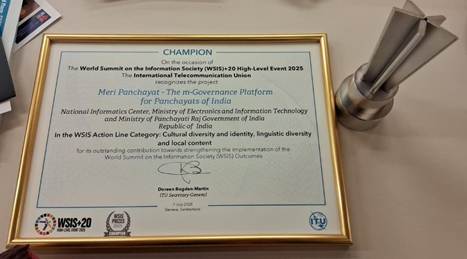
- 22 Jul 2025
In News:
India’s digital governance model received global recognition as the Meri Panchayat mobile application won the prestigious WSIS Prizes 2025 Champion Award under the category Cultural Diversity and Identity, Linguistic Diversity and Local Content. The award was presented during the WSIS+20 High-Level Event 2025 held in Geneva, Switzerland.
Key Highlights:
- The award was conferred by the International Telecommunication Union (ITU) as part of the World Summit on the Information Society (WSIS) initiative.
- The WSIS+20 event commemorated 20 years of WSIS, providing a platform to assess digital progress, address new challenges, and promote inclusive information societies.
- The event was co-hosted by ITU and the Swiss Confederation, and co-organized by UNESCO, UNDP, and UNCTAD.
About the “Meri Panchayat” App:
- A flagship m-Governance platform developed by the Ministry of Panchayati Raj in collaboration with National Informatics Centre (NIC) under the Ministry of Electronics and IT (MeitY).
- Designed to empower 2.65 lakh Gram Panchayats, the app caters to over 950 million rural residents and 25 lakh elected Panchayat representatives.
Key Features:
- Real-time Access: Budgets, receipts, payments, and Panchayat-level development plans.
- Transparency & Accountability: Social audit tools, geo-tagged fund utilization, and grievance redressal mechanisms.
- Participatory Governance: Enables citizens to propose projects, rate completed works, and view Gram Sabha decisions.
- Multilingual Support: Interface available in 12+ Indian languages, enhancing local inclusivity.
- Weather and Civic Info: Gram Panchayat-level weather forecasts, civic services, and infrastructure details.
Significance:
- The app strengthens participatory democracy by digitally integrating rural citizens into governance.
- It aims to bridge the digital divide and promote linguistic and cultural inclusivity in rural India.
- Recognized globally for promoting citizen-centric governance and local content diversity.
Allographa effusosoredica
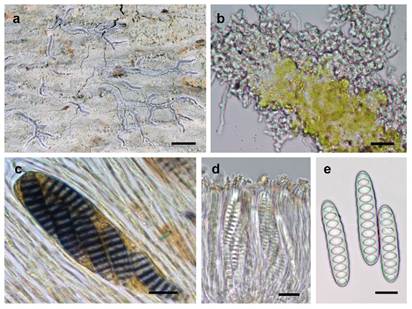
- 20 Jul 2025
In News:
A team of Indian scientists from MACS-Agharkar Research Institute, Pune (under the Department of Science & Technology) has discovered a new species of lichen named Allographa effusosoredica in the Western Ghats, a UNESCO World Heritage Site and biodiversity hotspot. This crustose lichen exhibits effuse soredia and contains norstictic acid, a rare secondary metabolite within its genus.
Scientific and Molecular Significance
- The species was examined through polyphasic taxonomy, integrating:
- Morphological traits
- Chemical profiling
- Molecular sequencing using genetic markers:
- Fungal DNA markers: mtSSU, LSU, RPB2
- Algal symbiont marker: ITS
- The lichen’s photobiont was identified as a species of Trentepohlia, advancing the understanding of tropical algal diversity in lichens.
- Though morphologically similar to Graphis glaucescens, it is phylogenetically closest to Allographa xanthospora.
Symbiosis in Lichens
- Lichens are composite organisms, formed by a symbiotic association between:
- A fungal partner (mycobiont) — provides structure and protection.
- A photosynthetic partner (photobiont), such as green algae or cyanobacteria — produces nutrients via photosynthesis.
- This discovery supports the concept of locally adapted symbiosis, emphasizing co-evolution in tropical ecosystems.
Ecological Importance of Lichens
- Lichens are vital for:
- Soil formation
- Feeding insect populations
- Acting as bioindicators of air quality and ecosystem health.
Conservation and Biodiversity Impact
- Allographa effusosoredica is:
- The 53rd Allographa species reported from India.
- The 22nd species of this genus documented in the Western Ghats.
- The first Indian Allographa species validated using molecular tools.
- The study was supported by the Anusandhan National Research Foundation (ANRF) and contributes to the growing inventory of India’s cryptic biodiversity.
Marungur Excavation
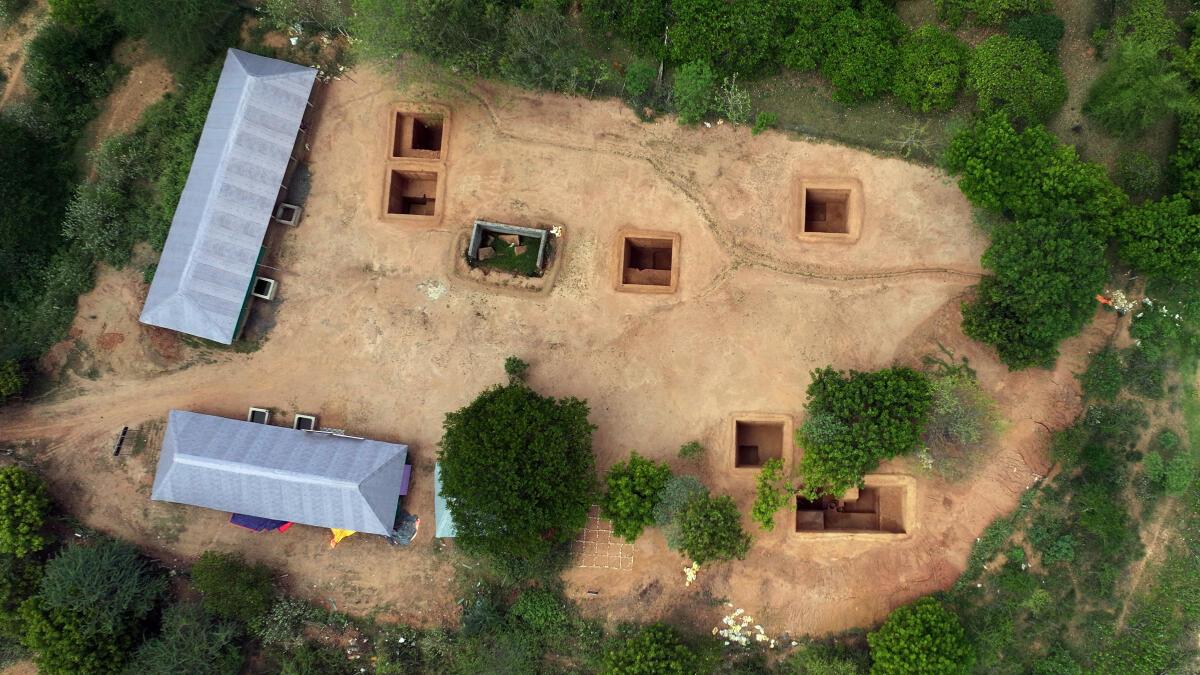
- 21 Jul 2025
In News:
The Tamil Nadu State Department of Archaeology (TNSDA) has completed a landmark archaeological excavation at Marungur village, located in Panruti taluk, Cuddalore district, uncovering a habitation-cum-burial site dating from the Iron Age to the Early Historic period. This multidisciplinary excavation offers significant insights into the cultural evolution of ancient Tamil Nadu’s Naduvil Mandalam (Central Territorial Division), between the Thenpennai and Vada Vellar rivers.
Key Features:
1. Rare Dual Site Discovery
- Both a habitation mound and an associated burial site were found together — a rarity in Tamil Nadu.
- The site is situated at 100 metres above mean sea level, adjacent to a pond and covered by laterite soil.
2. Chronological Context
- Dated tentatively to the transition from late Iron Age to Early Historic Period.
- Radiocarbon dating (AMS) of charcoal samples, phytolith studies, and Optically Stimulated Luminescence (OSL) analysis are underway to confirm dates.
3. Advanced Techniques Used
- UAV Mapping, LiDAR (Light Detection and Ranging), stratigraphic trenching, and archaeo-botanical studies.
- Collaboration with Beta Analytic Laboratory (USA) and the French Institute of Pondicherry for dating and pollen analysis.
Major Discoveries
A. Habitation Mound (8 Trenches Excavated)
- Pottery: Rouletted ware, red-slipped ware, black-and-red ware, grey ware, coarse red ware, and graffiti-inscribed potsherds (some resembling Indus signs).
- Artifacts (95 antiquities): Bone tools (points), burnishing stones, terracotta pipes, and beads (carnelian, agate, quartz, glass, terracotta).
- Iron implements: Crescent-shaped chisels, knives.
- Conch shell cores and antimony rods (ornamental use).
- Copper coin of Raja Raja Chola I from upper layers.
- Large terracotta storage jars (1.25 m), one containing six bone tools.
B. Burial Site (2 Trenches Excavated in Cashew Grove)
- Megalithic Stone Circles (Laterite):
- Two concentric circles (outer and inner), capstone-protected burial urns.
- Total of 10 urns recovered.
- Grave Goods:
- Iron swords, red jasper beads, black-and-red ware, red-slipped ware.
- Offering pots around urns — evidence of complex burial rituals.
C. Tamil-Brahmi Inscribed Potsherds
- Found in urn burials and dated paleographically to 2nd–3rd century BCE.
- Inscriptions include terms like “a-ti-y(a)-ka-n”, “a-ma-?”, and “a-ta”.
- Significance: Among earliest epigraphic evidence of Tamil-Brahmi in burial contexts.
Significance:
|
Aspect |
Significance |
|
Cultural Chronology |
Sheds light on the transition from the Iron Age to Early Historic society. |
|
Urban & Trade Patterns |
Proximity to ancient port cities like Arikamedu and Poompuhar hints at external trade. |
|
Script & Literacy |
Tamil-Brahmi inscriptions expand understanding of early Tamil epigraphy. |
|
Burial Practices |
Megalithic urn burials with grave goods indicate complex socio-religious beliefs. |
|
Scientific Advancement |
Integration of modern remote sensing and dating techniques in Indian archaeology. |
Future Steps
- Radiometric Dating: Charcoal to be analyzed using Accelerator Mass Spectrometry (AMS) in the USA.
- Pollen and phytolith analysis to reconstruct ancient diet and environmental conditions.
- Thermoluminescence and petrology studies to date ceramics and sediment exposure.
- TNSDA proposes further surveys at Manikkollai (30 km from Marungur) for 2025–26.
88th Executive Committee Session of the Codex Alimentarius Commission (CCEXEC88)
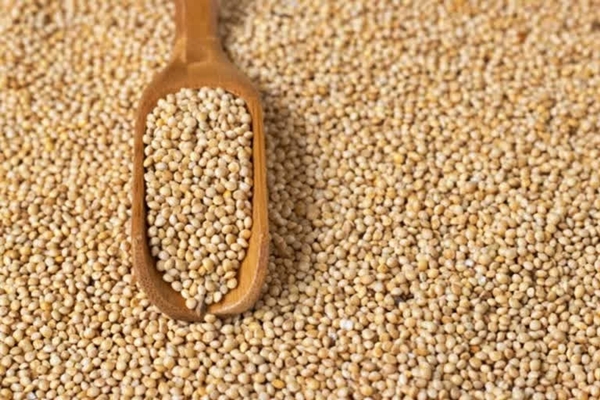
- 21 Jul 2025
In News:
India’s contributions were widely appreciated at the 88th Executive Committee Session of the Codex Alimentarius Commission (CCEXEC88) held at FAO Headquarters, Rome.
What is the Codex Alimentarius?
- A collection of internationally recognized food standards, guidelines, and codes of practice.
- Promotes consumer health protection, food safety, and fair-trade practices.
- Recognized under the WTO Agreement on the Application of Sanitary and Phytosanitary (SPS) Measures as a global reference point.
Codex Alimentarius Commission (CAC)
|
Feature |
Detail |
|
Established |
1963 by FAO and WHO |
|
Type |
Intergovernmental food standards body |
|
Headquarters |
Rome, Italy |
|
Objectives |
To protect consumer health and ensure fair practices in the food trade |
|
Members |
189 members: 188 countries + European Union |
|
India’s Membership |
Since 1964 |
Structure of CAC:
- Codex Commission
- Executive Committee (CCEXEC)
- Codex Secretariat
- Subsidiary Bodies and Committees
Meetings alternate between Geneva and Rome annually. Funded by regular budgets of FAO and WHO.
India’s Contributions at CCEXEC88 (2025):
1. Millet Standards: India chaired the development of Codex group standards for whole millet grains, alongside Mali, Nigeria, and Senegal. These standards are up for final approval at CAC48.
2. Strategic Planning (2026–2031):
- India led discussions on SMART (Specific, Measurable, Achievable, Relevant, Time-bound) indicators for monitoring Codex outcomes.
- These KPIs will guide Codex’s strategic direction and will be adopted at CAC48.
3. Regional Capacity Building:
- India mentored Bhutan, Nepal, Bangladesh, Sri Lanka, and Timor Leste under the Codex Trust Fund (CTF).
- Urged other developing countries to use the CTF for mentorship and twinning programs.
Other Leadership Roles by India in Codex:
|
Domain |
India's Role |
|
Spices & Herbs |
Chairs Codex Committee on Spices and Culinary Herbs (CCSCH) since 2014 |
|
Fresh Produce |
Led standard development for dates, co-chaired for turmeric and broccoli |
|
Digital Participation |
Promotes transparent, inclusive discussions in Codex committees |
National Codex Contact Point (NCCP), India
- Constituted by: Food Safety and Standards Authority of India (FSSAI)
- Role:
- Liaison with the Codex Secretariat
- Coordinate India’s input via National Codex Committee
- Facilitate domestic stakeholder consultation for Codex decisions
Kashi Declaration
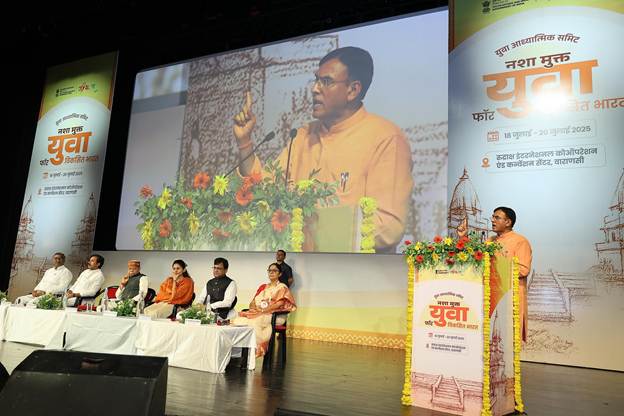
- 21 Jul 2025
In News:
The Youth Spiritual Summit 2025 concluded at the Rudraksh International Convention Centre, Varanasi, with the formal adoption of the Kashi Declaration — a landmark roadmap to combat drug abuse through youth and spiritual leadership.
- Organised by: Ministry of Youth Affairs and Sports
- Theme: "Drug-Free Youth for Developed India"
What is the Kashi Declaration?
The Kashi Declaration is a national action plan to counter substance abuse in India. It integrates spiritual wisdom, youth empowerment, and institutional coordination to establish a Nasha Mukt Yuva (Drug-Free Youth) by 2047, aligning with the vision of Viksit Bharat @2047.
Key Objectives:
- Eradicate Drug Abuse: Mobilise youth to build a drug-free society by 2047.
- Spiritual Mobilisation: Leverage India’s spiritual heritage as a tool for transformation and healing.
- Whole-of-Society Approach: Involve families, schools, communities, and institutions in prevention and rehabilitation.
- Empower Youth Volunteers: Enable MY Bharat clubs to conduct awareness, outreach, and de-addiction drives.
- Institutional Coordination: Establish a Joint National Committee for multi-ministerial convergence and periodic reporting.
Major Features:
|
Feature |
Details |
|
Plenary-Driven Agenda |
Covered themes of psychology, drug trafficking, awareness, and spiritual rehabilitation. |
|
Multi-Ministerial Action |
Involves Ministries of Youth Affairs, Social Justice, Home Affairs, Labour, and Culture. |
|
Annual Review Mechanism |
Progress tracked via the Viksit Bharat Young Leaders Dialogue 2026. |
|
Digital Monitoring |
Measures proposed to curb online targeting of schoolchildren for drugs. |
|
Community Outreach |
Grassroots campaigns, pledge drives, and support services launched through the MY Bharat platform. |
Institutional Mechanisms Proposed:
- Joint National Committee: For inter-ministerial coordination and implementation oversight.
- Annual Progress Reporting: Ensures transparent monitoring and accountability.
- National Platform: To connect affected youth with rehabilitation and support services.
Green Synthesis of Hydrogen Peroxide
- 19 Jul 2025
In News:
Indian scientists at the S.N. Bose National Centre for Basic Sciences (SNBNCBS) have developed a novel, eco-friendly method to synthesize hydrogen peroxide (H?O?) directly from sunlight and water using a photocatalyst called Mo-DHTA COF. This innovation marks a significant advancement in green chemistry and sustainable industrial practices.
What is Hydrogen Peroxide (H?O?)?
- A colorless, bitter-tasting liquid with powerful oxidizing properties.
- Environmentally friendly: Decomposes into water and oxygen without leaving harmful residues.
- Naturally present in trace amounts in the atmosphere.
- Unstable and decomposes readily, releasing heat.
- Found in household use (3–9% concentration) for disinfection, bleaching, and wound cleaning.
Applications
- Medical: Disinfectant, wound cleaner.
- Industrial: Textile and paper bleaching, foam rubber production, and rocket propellant.
- Environmental: Wastewater treatment, green sterilization.
- Energy & Chemistry: Fuel cells, chemical synthesis, and potentially in CO? reduction and water splitting.
Limitations of Conventional H?O? Production
- Energy-intensive and environmentally hazardous.
- Costly and not sustainable for large-scale, decentralized applications.
The Innovation: Mo-DHTA COF
What is it?
- Mo-DHTA COF stands for dimolybdenum paddlewheel-embedded Covalent Organic Framework.
- Developed by a DST-supported research team at SNBNCBS.
- Published in the journal Small.
Photocatalytic Mechanism
- Made from α-hydroquinone-based organic linkers and dimolybdenum units.
- Upon visible light exposure, the material generates excitons (electron-hole pairs).
- Electrons reduce oxygen to superoxide radicals, which then convert to H?O? through further reactions.
- Functions in various media (ethanol, benzyl alcohol, and even pure water).
Advantages of Mo-DHTA COF
|
Feature |
Description |
|
Eco-Friendly |
Uses only water and sunlight—no harmful by-products. |
|
High Photocatalytic Efficiency |
Effective even in pure water, not just organic solvents. |
|
Stability |
Structurally stable and recyclable, suitable for long-term use. |
|
Enhanced Performance |
Overcomes limitations of earlier photocatalysts like metal oxides, g-C?N?, and MOFs. |
|
Scalable |
Promising for industrial upscaling and decentralized chemical production. |
Significance and Future Potential
- Green Chemistry: Sets a foundation for cleaner chemical production methods.
- Healthcare & Pharma: Enables low-cost production of disinfectants.
- Environmental Remediation: Supports sustainable water purification and sterilization.
- Energy & Materials Science: Potential use in CO? reduction, water splitting, and fuel cell technologies.
- Research Outlook: Future focus includes optimization of metal-embedded COFs and exploring other catalytic systems for broader applications.
Akash Prime Missile System

- 19 Jul 2025
In News:
India has successfully conducted a high-altitude trial of the Akash Prime surface-to-air missile system in Ladakh, marking a major step in strengthening indigenous air defence capabilities, particularly for mountainous and high-altitude terrains.
What is Akash Prime?
Akash Prime is an upgraded variant of the Akash Surface-to-Air Missile (SAM) system, developed by the Defence Research and Development Organisation (DRDO). It is designed to operate efficiently in high-altitude, low-oxygen environments—ideal for India’s sensitive border regions like Ladakh and Sikkim.
Developers
- DRDO – Lead developer
- In collaboration with:
- Bharat Dynamics Limited (BDL)
- Bharat Electronics Limited (BEL)
Key Features
|
Feature |
Description |
|
Purpose |
Neutralizes aerial threats like enemy aircraft, drones, and cruise missiles |
|
Altitude Performance |
Successfully tested at 15,000 ft; engineered for deployment above 4,500 metres |
|
Seeker Technology |
Equipped with an indigenous Radio Frequency (RF) seeker for precise target acquisition during terminal phase |
|
Guidance System |
Hybrid: Command guidance + terminal active homing |
|
Range & Speed |
Operates within 25–30 km range; travels at Mach 2.5 |
|
Mobility |
Mounted on mobile platforms for rapid deployment across terrains |
|
All-Weather Capability |
Functions in extreme cold and low-density atmospheric conditions |
|
Kill Probability |
88% (single missile); up to 98.5% in dual-salvo mode |
Operational Significance
- High-Altitude Readiness: Specifically tailored for mountainous regions such as the Line of Actual Control (LAC).
- Versatile Deployment: Protects mobile, semi-mobile, and fixed military installations.
- Strategic Feedback Integration: Incorporates enhancements based on feedback from armed forces for use in vital installations.
Strategic Importance
- Aatmanirbhar Bharat: Fully indigenous system contributing to self-reliance in defence manufacturing.
- Cost Efficiency: Reduces dependency on imported air defence systems.
- Force Multiplier: Strengthens India’s layered air defence network against modern aerial threats.
ADEETIE Scheme
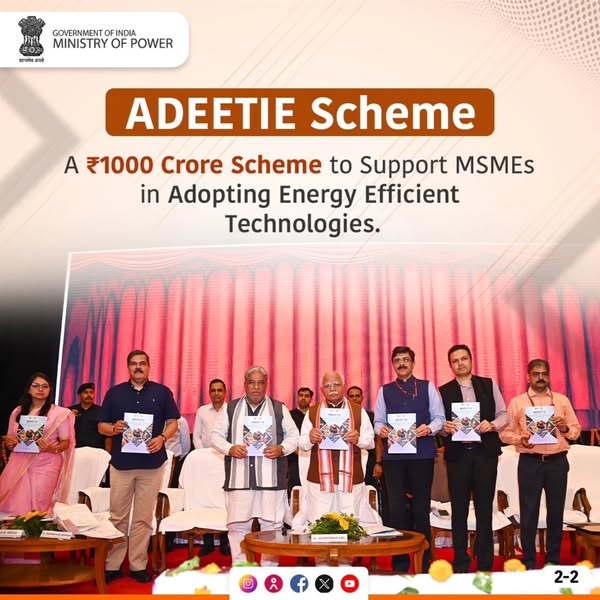
- 18 Jul 2025
In News:
The Ministry of Power launched the Assistance in Deploying Energy Efficient Technologies in Industries & Establishments (ADEETIE) scheme to promote energy efficiency in Micro, Small, and Medium Enterprises (MSMEs).
Key Details:
- Objective: To reduce energy consumption by 30–50%, enhance the power-to-product ratio, and facilitate the creation of green energy corridors in MSME industrial sectors.
- Implementing Agency:
- o Bureau of Energy Efficiency (BEE), under the Ministry of Power
- o Legislative backing: Energy Conservation Act, 2001
- Duration & Funding
- o Period: FY 2025–26 to 2027–28 (3 years)
- o Budgetary Outlay: ?1000 crore
- Target Beneficiaries
- Eligible Enterprises: MSMEs with Udyam ID
- Must demonstrate a minimum 10% energy savings using implemented technologies
- Sectoral Coverage: Targets 14 energy-intensive sectors, including: Brass, Bricks, Ceramics, Chemicals, Fisheries, Food Processing, etc.
- Implementation Strategy Phased Roll-out:
- Phase 1: 60 industrial clusters
- Phase 2: Additional 100 clusters
Scheme Components
|
Component |
Details |
|
Interest Subvention |
- 5% for Micro & Small Enterprises |
|
Technical Assistance |
- Investment Grade Energy Audits (IGEA) |
|
Financial Support |
- Incentives for adoption of efficient technologies |
Other BEE Initiatives for MSMEs
|
Initiative |
Purpose |
|
BEE-SME Programme |
Promote energy efficiency in MSMEs |
|
National Programme on Energy Efficiency & Technology Upgradation |
Modernize and reduce energy intensity |
|
SIDHIEE Portal |
Digital tool providing energy efficiency insights and handholding support |
Bureau of Energy Efficiency (BEE)
- The Government of India set up the Bureau of Energy Efficiency (BEE) on March 1, 2002 under the provisions of the Energy Conservation Act, 2001.
- The mission of the Bureau of Energy Efficiency is to assist in developing policies and strategies with a thrust on self-regulation and market principles, within the overall framework of the Energy Conservation Act, 2001 with the primary objective of reducing the energy intensity of the Indian economy.
- BEE coordinates with designated consumers, designated agencies and other organizations and recognises, identifies and utilises the existing resources and infrastructure, in performing the functions assigned to it under the Energy Conservation Act.
- The Energy Conservation Act provides for regulatory and promotional functions.
Quantum Noise and Intraparticle Entanglement
- 18 Jul 2025
In News:
A collaborative study led by the Raman Research Institute (RRI), Bengaluru, in association with Indian and international institutions, has made a groundbreaking discovery: quantum noise, often seen as a disruptive factor in quantum systems, may facilitate or even revive quantum entanglement under specific conditions.
Key Scientific Concept: Quantum Entanglement
- Quantum Entanglement: A quantum phenomenon where particles remain interconnected such that the state of one particle instantly influences the state of another, regardless of distance.
- Intraparticle Entanglement: A lesser-known form of entanglement occurring between different properties (degrees of freedom) of a single particle, as opposed to interparticle entanglement (between two or more particles).
The Discovery
- Contrary to long-held assumptions, quantum noise, specifically amplitude damping, can:
- Revive lost intraparticle entanglement
- Generate entanglement in initially unentangled intraparticle systems
- In contrast, interparticle entanglement under similar noise conditions only decays without revival.
Types of Quantum Noise Studied
- Amplitude Damping: Simulates energy loss, akin to an excited state relaxing to a ground state.
- Phase Damping: Disrupts phase relationships, impacting quantum interference.
- Depolarizing Noise: Randomizes the quantum state in all directions.
- Key Finding: Intraparticle entanglement is more robust and less susceptible to decay across all three noise types.
- Scientific Tools Used
- Derived an analytical formula for concurrence (a measure of entanglement)
- Developed a geometric representation of how entanglement behaves under noise
Institutions Involved
- Raman Research Institute (RRI) – Lead Institute (Autonomous under DST)
- Indian Institute of Science (IISc)
- Indian Institute of Science Education and Research (IISER), Kolkata
- University of Calgary
- Funded by:
- India-Trento Programme on Advanced Research (ITPAR)
- National Quantum Mission (NQM), Department of Science and Technology (DST)
Applications and Significance
- Could lead to more stable and efficient quantum systems
- Implications for Quantum Communication and Quantum Computing
- Results are platform-independent (applicable to photons, trapped ions, neutrons)
- Provides a realistic noise model (Global Noise Model) for practical quantum technologies
Pradhan Mantri Divyasha Kendra (PMDK)
- 17 Jul 2025
In News:
The Union Ministry of Social Justice & Empowerment has recently inaugurated the 75th Pradhan Mantri Divyasha Kendra (PMDK) at the Government Medical College, Badaun, Uttar Pradesh, marking a significant milestone in India's efforts toward inclusive social welfare.
About PMDK
The Pradhan Mantri Divyasha Kendra (PMDK) is a flagship initiative of the Government of India aimed at delivering integrated rehabilitation and assistive services under one roof. It caters primarily to:
- Persons with Disabilities (Divyangjan), as identified under the Rights of Persons with Disabilities Act, 2016.
- Senior Citizens, especially those from economically weaker sections (EWS).
These centres offer comprehensive services including:
- Assessment and evaluation
- Counselling
- Distribution of assistive devices
- Post-distribution follow-up care
Institutional Framework
PMDKs operate under the aegis of the Ministry of Social Justice & Empowerment, and are implemented by the Artificial Limbs Manufacturing Corporation of India (ALIMCO), a Central Public Sector Undertaking under the Department of Empowerment of Persons with Disabilities (DEPwD).
Schemes Implemented through PMDKs
- Assistance to Disabled Persons for Purchase/Fitting of Aids and Appliances (ADIP Scheme): Aims to assist Divyangjan with suitable, durable, and scientifically manufactured aids and appliances.
- Rashtriya Vayoshri Yojana (RVY): Focuses on providing free-of-cost assistive devices to senior citizens from BPL or economically weaker backgrounds.
Beneficiary-Oriented Impact
- With the inauguration of the latest centre in Badaun, the total number of operational PMDKs in the country has reached 75.
- These centres have collectively benefited over 1.4 lakh individuals, distributing assistive devices worth ?179.15 lakh.
- Devices offered include:
- Tricycles, wheelchairs, walkers
- Hearing aids and artificial limbs
- Other mobility and sensory support equipment
Significance and Relevance
The PMDK initiative plays a crucial role in addressing the accessibility gap in health and welfare services for Divyangjan and elderly citizens. By establishing these centres at regional medical hubs, the government is:
- Reducing the travel burden and logistical challenges for beneficiaries.
- Ensuring dignified, timely, and localised support.
- Strengthening the implementation of constitutional and legal mandates under Articles 41 and 46, which call for state support to the vulnerable sections of society.
Who is an ‘Ordinarily Resident’?
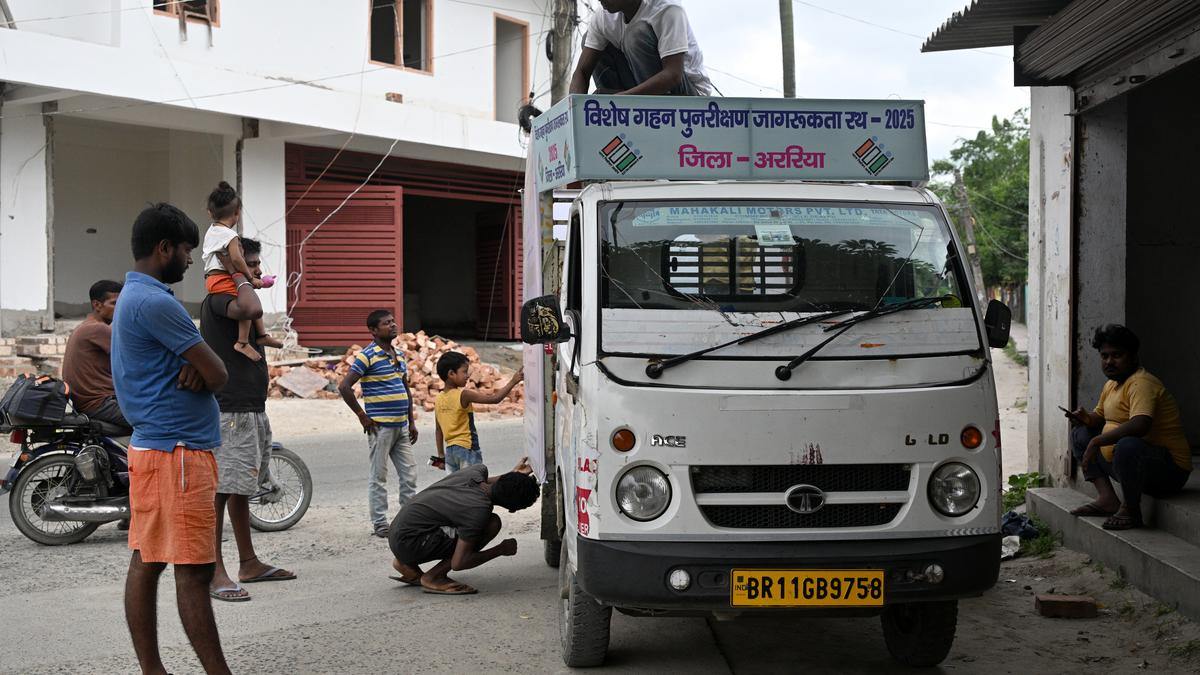
- 16 Jul 2025
In News:
The Election Commission of India (ECI) has initiated a Special Intensive Revision (SIR) of electoral rolls in Bihar, sparking debate over the eligibility of migrant workers and the interpretation of ‘ordinarily resident’ under electoral law.
Legal Basis of ‘Ordinarily Resident’
- Representation of the People Act, 1950:
- Section 19: Only persons ordinarily resident in a constituency are eligible for enrolment in its electoral roll.
- Section 20: Defines ‘ordinarily resident’ and clarifies that:
- Ownership or possession of a house alone does not qualify one as ordinarily resident.
- A person temporarily absent from their usual place of residence (due to work, travel, etc.) continues to be ordinarily resident there.
- Certain categories are deemed to be ordinarily resident in their home constituency even if posted elsewhere:
- Members of armed forces,
- State police serving outside their State,
- Central government employees posted abroad,
- Persons holding constitutional offices declared by the President in consultation with the ECI,
- Their spouses are also covered.
- Section 20A (added in 2010):
- Allows Non-Resident Indians (NRIs) to register and vote from the address mentioned in their passport, even if they reside abroad long-term.
Rules Governing Electoral Rolls
- The Registration of Electors Rules, 1960 (RER):
- Notified by the Central Government in consultation with the ECI.
- Govern the preparation, revision, and correction of electoral rolls.
- Electoral Registration Officers apply and verify the concept of ‘ordinarily resident’ during the enrolment process.
Judicial Interpretation
- Gauhati High Court (Manmohan Singh Case, 1999):
- Defined ‘ordinarily resident’ as one who is habitually and permanently living in a place.
- The person must intend to reside there, and society must reasonably accept them as a resident.
Sanchar Mitra Scheme
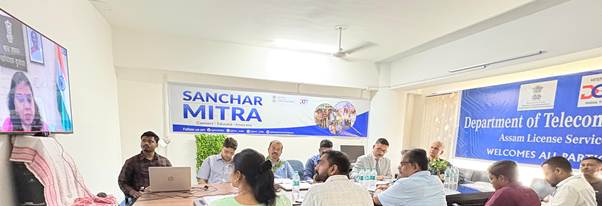
- 15 Jul 2025
In News:
The Sanchar Mitra Scheme, launched by the Department of Telecommunications (DoT), Ministry of Communications, is a nationwide volunteer-based initiative aimed at promoting digital literacy, telecom safety, and cybersecurity awareness among citizens.
Initially piloted in select institutions, the scheme has now been scaled up nationally due to its successful outreach and impact.
Key Highlights:
- Who are Sanchar Mitras?
- Selected university student volunteers from streams such as telecom, electronics, computer science, and cybersecurity who act as digital ambassadors to spread awareness at the grassroots level.
- Core Objectives:
- Promote digital safety and cyber hygiene
- Raise awareness on cyber frauds, EMF radiation concerns, and responsible mobile usage
- Bridge the communication gap between telecom services and citizens
- Training & Exposure: Sanchar Mitras receive specialized training from:
- National Communications Academy–Technology (NCA-T)
- DoT Media Wing: Training covers topics such as 5G, 6G, Artificial Intelligence, Cybersecurity, and telecom technologies.
- Community Engagement: Volunteers organize awareness campaigns, collaborate with NGOs, and engage in door-to-door outreach to promote informed digital behavior.
- Assessment & Incentives: Participants are evaluated on innovation, consistency, and outreach impact. Top performers receive:
- Internship opportunities
- Involvement in national telecom projects
- Invitations to forums like the India Mobile Congress
- Participation in International Telecommunication Union (ITU) events
Recent Developments:
- The first expanded rollout was initiated in Assam, where DoT partnered with 18 top engineering institutions including IIT, IIIT, and NIT.
- Chaired by senior DoT officials, sessions in BSNL Bhawan, Guwahati, introduced the scheme and invited collaboration from academic institutions.
Significance for India:
- Digital Inclusion: Empowers citizens to participate securely in the digital ecosystem.
- Youth Engagement: Mobilizes Yuva Shakti as a force for nation-building and technological awareness.
- Cybersecurity Shield: Acts as a grassroots defense against increasing cyber threats and misinformation.
- Alignment with National Priorities: Supports India’s vision of leadership in the 4 Ds – Democracy, Demography, Digitization, and Delivery.
Agricultural Monitoring and Event Detection (AMED) API
- 15 Jul 2025
In News:
Google has introduced a set of artificial intelligence (AI)-based innovations to advance India’s agricultural practices and enhance the cultural and linguistic relevance of global AI models.
Agricultural Monitoring and Event Detection (AMED) API
- Launched by: Google DeepMind and Google’s Partnerships Innovation Team
- Collaborators: TerraStack, IIT-Kharagpur, and other local partners
- Foundation: Built on the Agricultural Landscape Understanding (ALU) API launched in 2023
- Key Features:
- AI-Based Field Monitoring: Offers field-level insights using satellite imagery and deep learning to monitor crops and agricultural activity.
- Crop-Specific Data: Provides details on crop type, season, field size, and three years of historical cropping and land-use data.
- Event Detection: Detects agricultural changes at individual field levels, improving yield prediction and input management.
- Biweekly Updates: Data refreshed every two weeks to ensure real-time agricultural monitoring.
- Open Access for Innovation: Available for integration by agri-tech startups, financial institutions, and government bodies to support data-backed rural lending, climate adaptation, and sustainable farming practices.
- Objectives and Utility:
- Empower agriculture stakeholders with granular, real-time intelligence.
- Facilitate precision agriculture by tailoring support for soil, water, and climatic needs.
- Strengthen India's resilience to climate-related risks and promote informed policymaking.
- Help financial services design location-specific rural credit systems.
Amplify Initiative: Cultural and Linguistic Localization of AI
Google is also working to enrich AI systems with deeper understanding of India’s diversity through the Amplify Initiative, piloted earlier in Sub-Saharan Africa.
Indian Collaboration:
- Partner Institution: IIT-Kharagpur
- Goal: Create hyperlocal annotated datasets in multiple Indic languages related to healthcare, safety, and social issues.
- Aims to ensure that Large Language Models (LLMs) are better aligned with India’s cultural plurality and linguistic complexity.
Global Impact:
- Builds on success in Africa, where 8,000+ queries in 7 languages were developed by 155 experts to address issues such as chronic illness and misinformation.
TALASH Initiative

- 14 Jul 2025
In News:
The National Education Society for Tribal Students (NESTS), under the Ministry of Tribal Affairs, in collaboration with UNICEF India, has launched TALASH — Tribal Aptitude, Life Skills and Self-Esteem Hub — a first-of-its-kind national initiative aimed at fostering the holistic development of tribal students enrolled in Eklavya Model Residential Schools (EMRSs).
Launched in July 2025, TALASH reflects a focused effort to promote self-awareness, life skills, and career clarity among tribal youth across India. The initiative aligns with the vision of the National Education Policy (NEP) 2020, emphasizing inclusive, equitable, and holistic education.
Key Objectives:
- Support all-round development of over 1.38 lakh EMRS students across 28 States and 8 Union Territories.
- Strengthen academic learning, while building life skills, self-esteem, and career readiness.
- Bridge educational and psychological gaps for tribal youth, especially in remote and underprivileged areas.
Core Features of TALASH
- Digital Self-Discovery Platform: TALASH is an innovative digital portal that equips students with tools for career planning, aptitude assessment, and personal development.
- Psychometric Assessments: Inspired by NCERT’s Tamanna initiative, it offers a standardized aptitude test to identify students’ strengths, interests, and potential career paths.
Students are provided with Career Cards based on test results. - Career Counselling Support: Helps students make informed choices by aligning their aspirations with personal aptitude and career opportunities.
- Life Skills & Self-Esteem Modules: Includes interactive content to build problem-solving abilities, emotional intelligence, communication skills, and self-confidence.
- E-Learning for Educators: Offers a dedicated teacher portal for capacity building, enabling educators to mentor and support students effectively.
Implementation and Outreach
- The program is being rolled out in phases, starting in select EMRSs for smooth execution.
- So far, 189 teachers from 75 EMRSs have been trained as master trainers.
- By the end of 2025, TALASH aims to be active in all EMRSs nationwide.
Institutional Backing and Vision
- NESTS: An autonomous body under the Ministry of Tribal Affairs, responsible for the establishment and administration of EMRSs to ensure quality education for tribal students.
- UNICEF India: Brings global expertise in child development, focusing on equitable access, well-being, and digital empowerment.
Bulgaria to join the Eurozone in 2026
- 13 Jul 2025
In News:
Recently, the EU finance ministers officially approved Bulgaria’s adoption of the euro, set to take effect from January 1, 2026. This decision marks Bulgaria as the 21st member of the Eurozone, nearly 19 years after it joined the European Union in 2007. The euro will replace the Bulgarian lev at a fixed exchange rate of 1 euro = 1.95583 lev.
About the Eurozone
- The Eurozone comprises EU member states that have adopted the euro (€) as their official currency and fall under the monetary jurisdiction of the European Central Bank (ECB).
- The euro was introduced in electronic form in 1999 and entered physical circulation in 2002 across 12 initial member states.
- As of now, 20 countries use the euro, with Croatia being the latest entrant in 2023. Bulgaria will become the 21st in 2026.
Maastricht Convergence Criteria
To adopt the euro, EU member states must satisfy strict economic criteria to ensure stability and convergence with the Eurozone economies:
- Price Stability: Inflation should not exceed 1.5 percentage points above the average of the three best-performing EU states.
- Sound Public Finances:
- Fiscal deficit ≤ 3% of GDP
- Gross government debt ≤ 60% of GDP
- Exchange Rate Stability: The national currency must be part of ERM-II (Exchange Rate Mechanism) for at least 2 years without severe fluctuations.
- Interest Rate Convergence: Long-term interest rates must not exceed the average rates of the three lowest-inflation member states by more than 2 percentage points.
After years of delay due to high inflation, Bulgaria recently fulfilled all these criteria, leading to EU and ECB approval.
About Bulgaria
- Location: Southeastern Europe; occupies the eastern Balkan Peninsula.
- Borders:
- North: Romania
- South: Turkey & Greece
- West: Serbia & North Macedonia
- East: Black Sea
- Geography:
- Major mountain ranges: Balkan Mountains, Rhodope Mountains
- Highest peak: Mount Musala (2,925 m) in the Rila Mountains
- Rivers: Danube, Iskur, Maritsa, Struma, Tundzha, Yantra
- Climate: Mostly continental; southern areas influenced by the Mediterranean.
- Capital: Sofia
- Population: ~6.4 million
Broadcasting Infrastructure and Network Development (BIND) Scheme
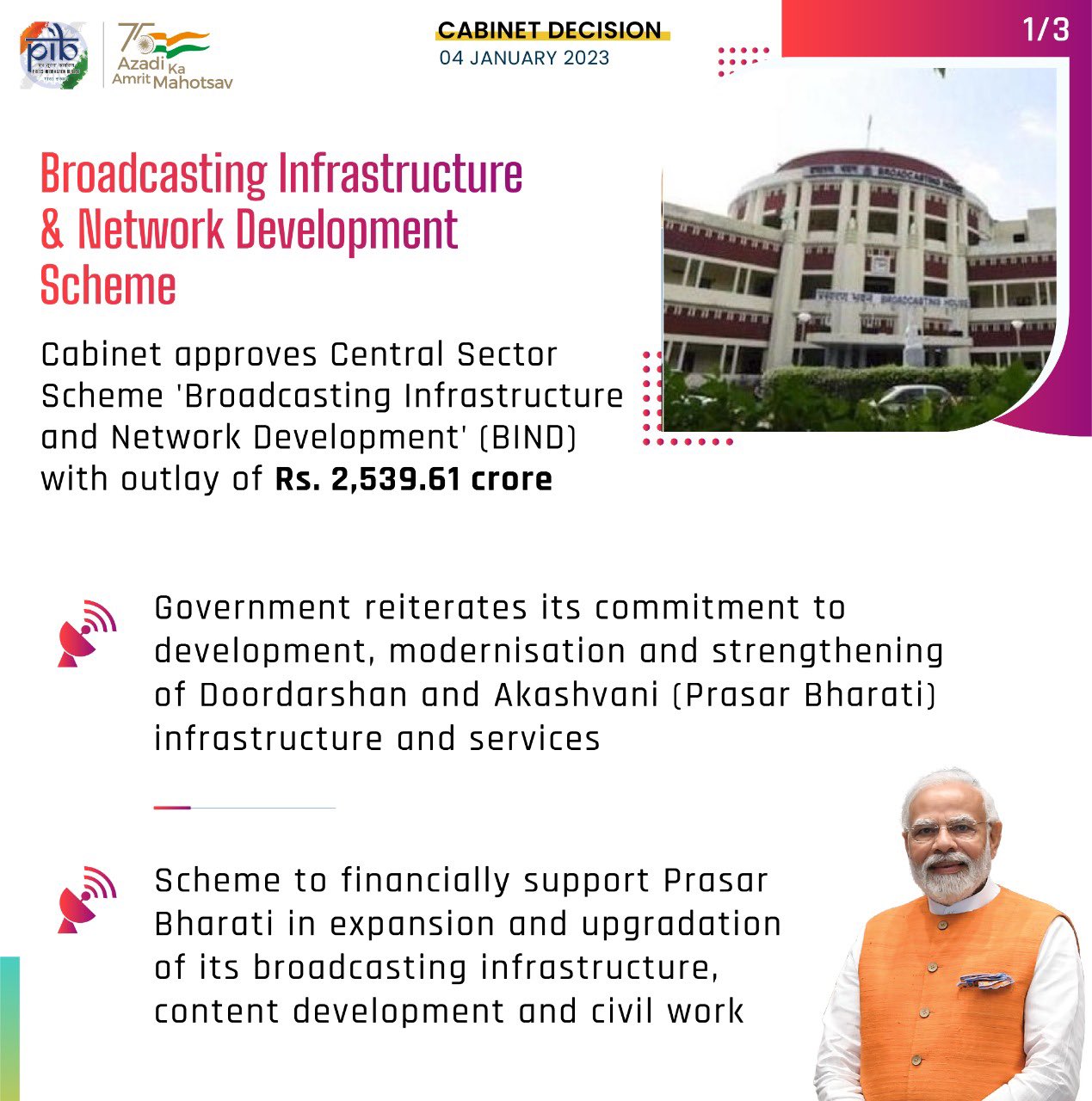
- 12 Jul 2025
In News:
The Government of India has proposed the establishment of a new Akashvani Kendra in Ujjain, Madhya Pradesh, under the Broadcasting Infrastructure and Network Development (BIND) Scheme.
About BIND Scheme
- Type: Central Sector Scheme
- Implementing Agency: Ministry of Information and Broadcasting
- Beneficiary: Prasar Bharati (All India Radio and Doordarshan)
- Objective: To provide financial support for:
- Expansion and modernization of broadcasting infrastructure
- Content development for domestic and international audiences
- Civil works related to Prasar Bharati’s operations
Key Features
- Facilitates technological upgradation of All India Radio (AIR) and Doordarshan (DD)
- Enhances reach in border, Left-Wing Extremism (LWE)-affected, and strategic regions
- Focuses on high-quality and diverse content
- Expands the capacity of the DTH platform, enabling more channels for viewers
- Aims to boost AIR FM coverage from 59% to 66% of India's geographical area and from 68% to 80% of the population
Significance
- Supports regional broadcasting, especially in underserved and aspirational districts
- Promotes cultural preservation and grassroots-level development narratives
- Expected to create indirect employment in manufacturing and broadcast services sectors
- Aids in ensuring last-mile delivery of public communication and information services
The proposed Akashvani Kendra in Ujjain aligns with the broader vision of ‘Viksit Bharat’, focusing on inclusive media access and robust public broadcasting infrastructure. It underscores the growing synergy between the Centre and States to enhance media penetration and communication outreach.
Admiralty (Jurisdiction and Settlement of Maritime Claims) Act, 2017
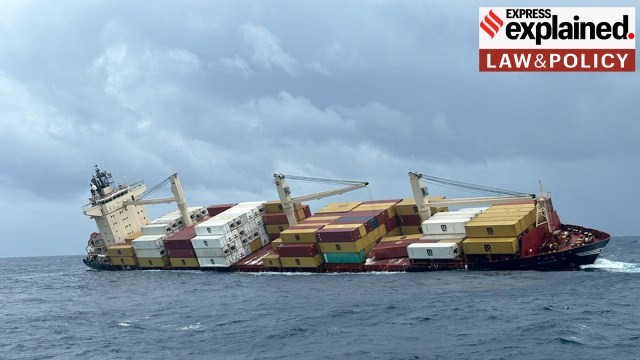
- 12 Jul 2025
In News:
In a rare legal move, the Kerala High Court ordered the conditional arrest of the Liberian container ship MSC Akiteta II, anchored at Vizhinjam Port. The Kerala government filed an admiralty suit seeking ?9,531 crore compensation for alleged environmental and economic damage caused by the sinking of MSC Elsa III.
Legal Framework: Admiralty (Jurisdiction and Settlement of Maritime Claims) Act, 2017
Purpose:
- Consolidates and updates maritime laws in India.
- Replaces outdated colonial legislations like:
- Admiralty Court Act, 1861
- Colonial Courts of Admiralty Acts of 1890 and 1891
- Relevant provisions of Letters Patent, 1865
Applicability:
- Applies to all vessels, regardless of owner’s residence or domicile.
- Exemptions:
- Inland vessels under the Inland Vessels Act, 1917
- Warships and other government vessels used for non-commercial purposes
- Foreign government vessels used for non-commercial purposes (as notified)
Key Provisions:
Section 4 – Maritime Claims:
High Courts can adjudicate disputes related to:
- Damage to vessels or marine environment
- Oil pollution and hazardous cargo
- Ownership or possession of a vessel
- Loss of life or injury due to vessel operations
- Carriage agreements (goods/passengers)
- Claims for unpaid wages, port dues, or cargo losses
Section 5 – Arrest of Vessels:
- Courts may order “arrest” of a ship to secure a maritime claim.
- Arrest can be made even if the ship is not directly involved but is owned by the liable party.
- It serves to ensure that compensation or security is provided before the vessel is released.
- Claimants may be asked to furnish an unconditional undertaking to compensate for wrongful arrest, if proved later.
Jurisdictional Expansion:
- Earlier limited to Bombay, Calcutta, and Madras High Courts.
- Now extended to Kerala, Karnataka, Odisha, Telangana, and Andhra Pradesh as well.
- Jurisdiction covers territorial waters up to 12 nautical miles, including seabed, subsoil, and airspace.
In Rem vs In Personam:
- Legal action can be initiated directly against the vessel (in rem) or against the owner/operator (in personam), based on the nature of the claim.
National Maritime Domain Awareness (NMDA) Project
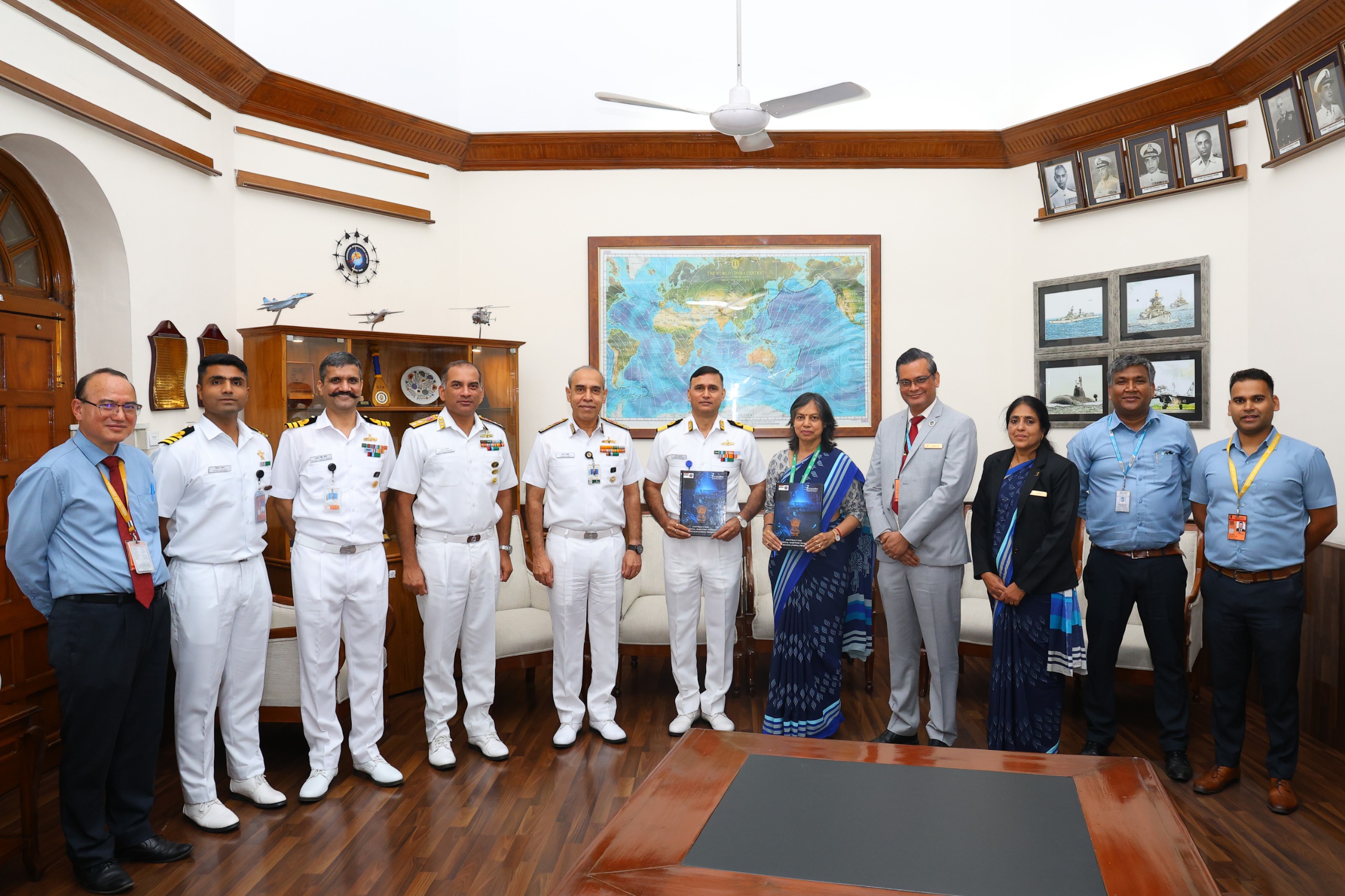
- 11 Jul 2025
In News:
The Indian Navy has signed a significant contract with Bharat Electronics Limited (BEL), Bengaluru for the implementation of the National Maritime Domain Awareness (NMDA) Project, a strategic initiative to strengthen India’s maritime and coastal security infrastructure.
Key Objectives and Scope
- Purpose: The NMDA Project aims to create a unified, real-time maritime surveillance and information-sharing framework to safeguard India's vast coastline and maritime interests.
- It seeks to enhance coordination among maritime stakeholders, including national agencies, coastal states, and union territories.
Major Components of the Project
- Upgrade of NC3I Network: The existing National Command, Control, Communication and Intelligence (NC3I) Network will be upgraded to a more advanced NMDA Network.
- AI Integration: Artificial Intelligence-enabled software will be deployed to enable smart surveillance, automated threat detection, and informed decision-making.
Multi-Agency NMDA Centre
- The Information Management and Analysis Centre (IMAC) at Gurugram — currently the nodal agency of the NC3I Network — will be transformed into a Multi-Agency NMDA Centre.
- The upgraded centre will include representatives from 15 national agencies across seven key ministries, such as Defence, Shipping, Petroleum, and Fisheries, ensuring seamless inter-agency coordination.
Operational and Strategic Benefits
- Integrated Maritime Picture: The system will link various stakeholders to provide a comprehensive operational view of India’s maritime domain.
- Enhanced Response: It will improve response mechanisms to maritime threats, search and rescue operations, environmental incidents, and other contingencies.
- Data Integration: Inputs from sectors such as commercial shipping and fisheries will be integrated into the system for improved situational awareness.
Execution and Administration
- The project will be implemented on a turnkey basis and administered by the Indian Navy.
- BEL will act as the lead system integrator, delivering both hardware and AI-enabled software solutions for the project.
Miniature Plasma Loops

- 11 Jul 2025
In News:
A significant discovery by Indian and international astronomers has unveiled the existence of miniature plasma loops in the lower layers of the Sun’s atmosphere, shedding new light on how the Sun stores and releases magnetic energy—a long-standing mystery in solar physics.
- These loops are tiny in scale, measuring 3,000–4,000 km in length and less than 100 km in width, making them difficult to detect with earlier instruments. Despite their short lifespan of only a few minutes, they offer crucial insights into magnetic reconnection—a process where tangled magnetic field lines snap and realign, releasing immense energy.
- The research was led by scientists at the Indian Institute of Astrophysics (IIA), Bengaluru, under the Department of Science and Technology (DST), in collaboration with global institutions including NASA, the Max Planck Institute, and the Big Bear Solar Observatory (BBSO).
Key Findings and Instruments Used
- The team used high-resolution imaging and multi-wavelength spectroscopy, combining data from the Goode Solar Telescope (BBSO), NASA’s IRIS, and the Solar Dynamics Observatory (SDO).
- The loops were observed in the H-alpha spectral line from hydrogen atoms—crucial for studying the solar chromosphere.
- Spectroscopic data from IRIS revealed non-thermal broadening of spectral lines, indicating explosive magnetic activity.
- Plasma jets erupting from the tops of these loops point to reconnection-driven events, similar to those that cause large-scale solar eruptions.
- Using Differential Emission Measure (DEM) analysis, the plasma inside these tiny loops was found to reach temperatures of several million degrees, which is unexpectedly high for regions in the dense chromosphere.
Why It Matters
- Although coronal loops in the outer solar atmosphere have been studied for decades, these miniature loops offer a unique window into the fine-scale dynamics of the Sun's magnetic environment. Understanding them is crucial for grasping the mechanisms behind solar flares, coronal heating, and space weather phenomena that impact Earth.
Future Prospects
- The findings highlight the need for next-generation solar observatories. India’s upcoming National Large Solar Telescope (NLST)—a 2-meter aperture facility proposed near Pangong Lake, Ladakh—aims to provide sharper images of the Sun’s chromosphere and better magnetic field data.
2nd Edition of the NER District SDG Index
- 10 Jul 2025
In News:
NITI Aayog, in collaboration with the Ministry of Development of North Eastern Region (MoDoNER) and with technical support from UNDP, released the second edition of the North Eastern Region District SDG Index (2023–24).
About the NER District SDG Index
- First Edition: Released in August 2021
- Current Edition: Covers 121 districts across the 8 North Eastern States
- Developed By: NITI Aayog, MoDoNER, and UNDP
- Purpose:
- Monitor district-wise progress on Sustainable Development Goals (SDGs)
- Provide evidence-based planning, resource allocation, and intervention strategies
- Ensure localisation of SDGs and leave no one behind
Scoring Categories
Districts are classified into four categories:
- Achiever: Score = 100
- Front Runner: Score 65–99
- Performer: Score 50–64
- Aspirant: Score < 50
Composite Score Range:
- Highest: Hnahthial, Mizoram – 81.43
- Lowest: Longding, Arunachal Pradesh – 58.71
Key Highlights
- 85% of districts showed an increase in composite scores.
- All districts of Mizoram, Sikkim, and Tripura attained Front Runner status.
- Hnahthial (Mizoram) emerged as the best-performing district.
- Nagaland entered the Top 10 with 3 districts.
- Sikkim showed the most consistent intra-state performance with a score range of just 5.5 points.
- Assam saw notable improvements in Zero Hunger, Quality Education, Clean Water & Sanitation, and Decent Work & Economic Growth.
Top Performing Districts
Significance
- Supports the Viksit Bharat @2047 vision by targeting SDG achievement by 2030.
- Enhances cooperative federalism by aligning state and district efforts with national goals.
- Acts as a diagnostic and planning tool for identifying gaps and prioritising interventions.
UAE Golden Visa Scheme
- 10 Jul 2025
In News:
The United Arab Emirates (UAE) has introduced a nomination-based pilot Golden Visa programme targeting skilled individuals from India and Bangladesh. However, recent rumours around a ?23 lakh “lifetime visa” triggered misinformation, later debunked by UAE authorities.
What is a Golden Visa?
- A long-term residency visa allowing foreign nationals to live, work, or study in the UAE without a local sponsor.
- Designed to attract investors, entrepreneurs, scientists, and skilled professionals.
- Offers 5 to 10 years of renewable residency, and in some cases, lifetime validity under specific frameworks.
Key Features of the UAE Golden Visa Scheme
|
Feature |
Details |
|
Residency |
Long-term (5–10 years); in some cases lifetime under nomination |
|
Sponsorship |
Not required (self-sponsored) |
|
Eligibility Categories |
Investors, entrepreneurs, scientists, doctors, artists, athletes, PhD holders, exceptional students |
|
Benefits |
Sponsor family and domestic staff; multiple entry; no need to stay in UAE continuously |
|
New Nomination-Based Model |
Pilot phase launched for India and Bangladesh — selection based on professional merit and contributions |
|
Application Process |
Managed through UAE’s official channels; some remote application facilities (e.g., OneVASCO centres) available |
|
No Minimum Investment Requirement (in new model) |
Unlike earlier versions requiring AED 2 million+ in assets or business |
Controversy: ?23 Lakh ‘Lifetime Golden Visa’ Rumour
- A viral rumour claimed that Indians could buy a lifetime UAE Golden Visa for ?23.3 lakh (AED 1,00,000).
- Debunked by UAE Government within 48 hours as false and misleading.
- Originated from a press release by Rayad Group, later withdrawn and discredited.
- UAE authorities clarified: No consultancy is authorised to process Golden Visas outside official channels.
- Golden Visas are not available for simple purchase; eligibility is merit-based, not transactional.
Eligibility vs. Misconception
- Golden Visas are for High Net-Worth Individuals (HNWIs) and exceptional talent — not for general migration or middle-class aspirations.
- Traditional routes still require investments of AED 2 million (~?4.67 crore) or equivalent in real estate or business.
Comparison with Other Countries’ Golden Visa Models
|
Country |
Investment Requirement |
|
Portugal |
€500,000 real estate / job creation / capital transfer |
|
Greece |
€250,000 property (rising in urban areas) |
|
Italy |
Startups, bonds, or public projects |
|
Singapore |
SGD 2.5 million under Global Investor Programme |
|
Grenada |
$235,000 donation or $270,000 property for citizenship |
|
UAE (Traditional) |
AED 2 million in real estate or business assets |
Significance for India-UAE Relations
- Enhances people-to-people links under the India–UAE Comprehensive Economic Partnership Agreement (CEPA).
- Offers Indian professionals access to UAE’s innovation, business, and academic ecosystem.
- Promotes economic diversification of UAE beyond oil — with India as a strategic partner.
Amaravati Quantum Valley Declaration (AQVD)
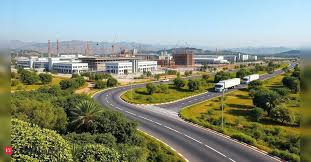
- 10 Jul 2025
In News:
The Government of Andhra Pradesh has officially approved the Amaravati Quantum Valley Declaration (AQVD), aiming to transform Amaravati into India’s first Quantum Valley and a global hub for quantum technologies.
What is AQVD?
- A strategic framework signed by the Andhra Pradesh Government, IBM, TCS, L&T, academia, and startups.
- It envisions a collaborative ecosystem for quantum computing, communication, sensing, and chip development.
- Seeks to align with India’s National Quantum Mission (NQM) to position Amaravati as a deep-tech capital.
Key Features and Targets
- Investment Goals: Total investment target of $1 billion by 2029, with $500 million by 2027.
- QChipIN: Creation of India’s largest open quantum testbed, integrating quantum computers and enabling hands-on innovation.
- Focus Areas: Quantum computing, quantum chip design, sensing technologies, and secure quantum communication.
- Skilling & Research: Encourages development of quantum talent and promotes industry-academia synergy.
Quantum Computing – Core Concepts
- Qubit: Basic unit of quantum data, unlike classical bits, can be in a state of superposition (0 and 1 simultaneously).
- Superposition: Enables parallel processing.
- Entanglement: Qubits can be interlinked, allowing instantaneous state sharing.
- Quantum Gates: Analogous to classical logic gates but work on qubits to perform complex operations.
Strategic & National Significance
- Dual-Use Technology: Quantum computing impacts national security, health, climate modeling, logistics, cryptography, and more.
- Data Sovereignty: Reduces dependence on foreign cloud-based quantum platforms.
- Global Competitiveness: Puts India on the map with nations like the US, China, and the EU in the quantum race.
Related National Initiatives
- National Quantum Mission (NQM):
- Launched with ?6,003 crore outlay.
- Target: Develop quantum computers with 50–1000 qubits by 2031.
- QpiAI-Indus (2025): India’s first full-stack quantum computer with 25 superconducting qubits.
- ISRO-SAC Projects: Satellite-based Quantum Key Distribution (QKD) for ultra-secure communications.
- Quantum Materials: Focus on superconductors and topological materials for robust devices.
Challenges Ahead
|
Challenge |
Description |
|
Decoherence |
Qubits are unstable and prone to error. |
|
Scalability |
Building large-scale, fault-tolerant systems is difficult. |
|
Cost |
Requires ultra-cold cryogenic systems and electromagnetic shielding. |
National Overseas Scholarship Scheme
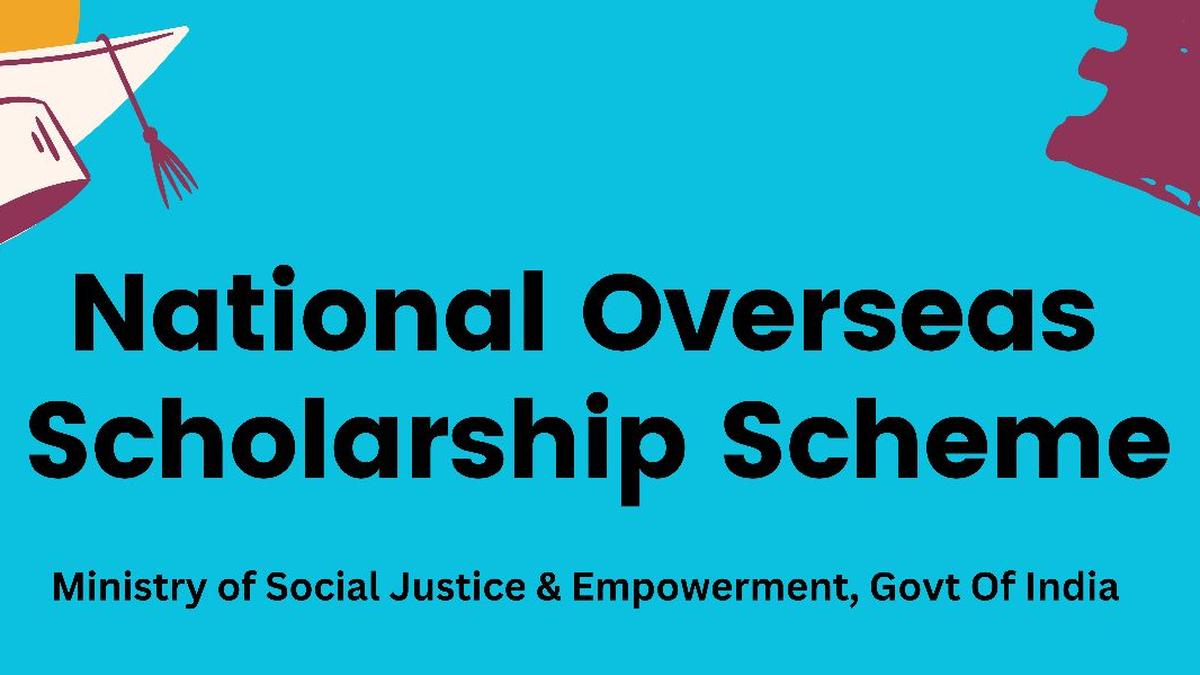
- 09 Jul 2025
In News:
The Ministry of Social Justice and Empowerment has come under scrutiny after withholding provisional award letters for 66 out of 106 selected candidates under the National Overseas Scholarship (NOS) scheme for the 2025–26 cycle. This development has raised concerns regarding funding gaps, administrative bottlenecks, and the future of the scheme intended to uplift marginalised students through access to global education.
About the National Overseas Scholarship Scheme
- The NOS is a Central Sector Scheme aimed at enabling students from socially and economically disadvantaged communities to pursue postgraduate (Master’s) and doctoral (Ph.D.) education abroad in top-ranking universities.
- It provides financial assistance for tuition, living expenses, contingency costs, and travel.
- Administered by: Ministry of Social Justice and Empowerment
- Target Beneficiaries:
- Scheduled Castes (SCs)
- Denotified, Nomadic, and Semi-Nomadic Tribes
- Landless Agricultural Labourers
- Traditional Artisans
- Eligibility Criteria:
- Academic Qualification:
- Master’s: Bachelor’s degree with ≥ 60%
- Ph.D.: Master’s degree with ≥ 60%
- Age Limit: Not more than 35 years as on April 1 of the selection year.
- Income Limit: Annual family income should not exceed ?8 lakh.
- University Criteria: Unconditional admission in Top 500 QS-ranked institutions.
- Other Conditions:
- A maximum of 2 students per family (second eligible only if slots remain).
- Not already settled or studying abroad.
- Key Features:
- Total Annual Slots: 125
- 115 for SCs, 6 for Denotified Tribes, 4 for Labourers/Artisans
- 30% reserved for women candidates
- Two-Phase Selection:
- First: QS Top 500 mandatory
- Second: Open to broader university lists
- State Cap: Maximum 10% slots per state to ensure geographic diversity
Ongoing Evaluation and Policy Review
- The government is currently conducting a performance evaluation of the NOS scheme ahead of its 16th financial cycle (2026–27). This includes assessing issues related to fund disbursal, slot utilization, and implementation gaps.
- A Parliamentary Standing Committee on Social Justice and Empowerment had earlier flagged:
- Insufficient scholarship amounts
- Persistent delays in fund release
- Underutilization of slots
- Need for expanding coverage and increasing annual slots
17th BRICS Summit 2025
- 09 Jul 2025
In News:
The 17th BRICS Summit was held in Rio de Janeiro, Brazil under the theme:
“Strengthening Global South Cooperation for a More Inclusive and Sustainable Governance.”
The summit concluded with the adoption of the Rio de Janeiro Declaration, marking a strategic shift towards BRICS expansion, inclusive multilateralism, and South-South cooperation.
What is BRICS?
- BRICS is an intergovernmental platform of emerging economies originally comprising Brazil, Russia, India, China, and South Africa.
- The term BRIC was coined by economist Jim O’Neill in 2001.
- The grouping evolved from informal dialogue (1st Summit in 2009, Yekaterinburg) to a structured cooperation framework.
- In 2024–25, BRICS underwent expansion and is now referred to as BRICS+.
Key Highlights of the 17th BRICS Summit 2025
1. Expansion of Membership
- Indonesia formally joined BRICS in 2025, becoming its first Southeast Asian member.
- Eleven new BRICS+ partner countries were welcomed: Belarus, Bolivia, Kazakhstan, Cuba, Nigeria, Malaysia, Thailand, Vietnam, Uganda, Uzbekistan.
- The expansion aims to reshape global power dynamics, promote multipolarity, and deepen Asia-Africa-Latin America cooperation.
2. Rio de Janeiro Declaration: Major Themes
A. Global Governance Reform
- Strong call for reforming UNSC, IMF, WTO to reflect contemporary geopolitical and economic realities.
- Supported the UN Summit of the Future's “Pact for the Future”, including the Global Digital Compact and Declaration on Future Generations.
- Emphasized greater participation of the Global South in international decision-making.
B. Peace and Security
- Condemned terrorism in all forms; specifically denounced the Pahalgam attack in India.
- Called for zero tolerance for terrorism and decisive global action against sponsors of terror.
- Opposed securitizing climate change; advocated development-centric responses to global challenges.
C. Technology and Responsible AI
- Released a Statement on Global AI Governance promoting a balance between innovation and regulation.
- Proposed the creation of a BRICS Science & Research Repository to facilitate open access for Global South researchers.
D. Climate Action
- Reaffirmed commitment to the Paris Agreement and UNFCCC principles, especially Common But Differentiated Responsibilities (CBDR).
- Supported Brazil’s hosting of COP-30 (Belem) and endorsed India’s bid for COP-33 in 2028.
- Launched the BRICS Leaders’ Framework on Climate Finance to enhance climate adaptation and finance equity.
E. Economic and Financial Cooperation
- Reviewed the BRICS Economic Partnership Strategy 2025; agreed to frame the 2030 Strategy, focusing on:
- Digital economy
- Trade and investment
- Financial integration
- Sustainable development
- Emphasized inclusive, rules-based multilateral trade systems.
- Launched BRICS Multilateral Guarantee Mechanism (BMG) under New Development Bank (NDB) to catalyze infrastructure and climate finance.
F. Social and Cultural Priorities
- Focus on inclusive development through:
- Empowerment of youth and women
- Support for persons with disabilities
- Urbanization and migration management
- Recognized demographic transitions as opportunities for sustainable growth.
India at BRICS 2025
India played a pivotal role in shaping key summit outcomes and announced its BRICS Chairship for 2026, themed around: Building, Resilience, Innovation, Cooperation, and Sustainability.
India’s Key Interventions:
- Global Financial Reform: Advocated for de-dollarization and diversification of global trade currencies.
- Digital Governance: Pushed for interoperable, inclusive digital public infrastructure.
- Institutional Reform: Reiterated the urgent need to restructure global governance institutions.
- Climate Finance: Urged equitable climate financing mechanisms for developing nations.
On BRICS Currency:
- India rejected the idea of a common BRICS currency, but supported local currency trade under a National Currency Settlement Framework.
- Refused to settle Russian oil trade in Chinese Yuan, indicating resistance to Chinese monetary dominance within BRICS.
Geopolitical Implications and U.S. Response
- With BRICS now representing 45% of the global population and 35% of world GDP, the bloc's rise has triggered concern in Western circles.
- The U.S., under former President Donald Trump, warned of:
- 10% tariff on countries aligning with BRICS’ "anti-American" stances.
- 100% tariff if BRICS pursues de-dollarization, viewing it as a direct challenge to U.S. economic interests.
International Treaty on Plant Genetic Resources for Food and Agriculture (ITPGRFA)
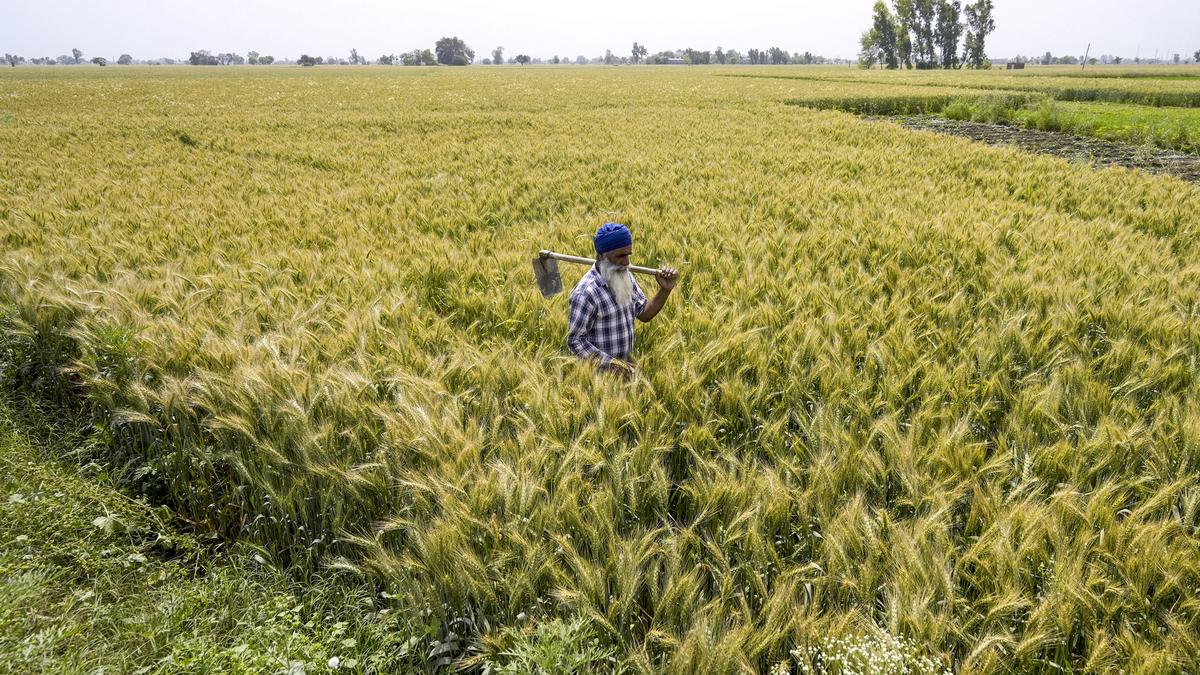
- 09 Jul 2025
In News:
India has raised strong objections to proposed amendments to the International Treaty on Plant Genetic Resources for Food and Agriculture (ITPGRFA)—also known as the Plant Treaty—during recent deliberations in Peru. The concerns stem from potential implications for India’s sovereign rights over plant genetic resources and its traditional farming practices.
About the Plant Treaty
The Plant Treaty is a legally binding international agreement, adopted by the Food and Agriculture Organization (FAO) in 2001 and enforced from 2004. India is a signatory to the treaty. It is aligned with the Convention on Biological Diversity (CBD) and supports the FAO’s Global Plan of Action.
Key Objectives:
- Conservation and sustainable use of plant genetic resources for food and agriculture (PGRFA).
- Equitable sharing of benefits arising from the use of these resources.
- Ensuring food security and preserving agrobiodiversity, especially for climate-resilient agriculture.
Core Features of the Treaty
- Multilateral System (MLS) of Access and Benefit-Sharing:
- Covers 64 major crops (e.g., rice, wheat, maize, pulses) listed in Annex I.
- Facilitates global access to plant genetic materials among member nations.
- Ensures benefit-sharing through:
- Technology transfer
- Capacity-building
- Commercialization revenues
- Standard Material Transfer Agreement (SMTA):
- A legal framework that governs the access, transfer, and exchange of genetic materials under the MLS.
- Farmers' Rights (Article 9):
- Recognizes the rights of farmers to save, use, exchange, and sell farm-saved seeds.
- Acknowledges indigenous knowledge and the contributions of local communities.
- Encourages inclusion of farmers in decision-making processes.
- Global Information System (Article 17): Facilitates data-sharing on plant genetic resources globally.
- Benefit-sharing Fund (BSF): Supports farmers and public institutions in developing countries to conserve genetic diversity, enhance crop productivity, and build resilience to pests and climate change.
India’s Concerns Over the Proposed Amendments
The new proposal seeks to expand the scope of Annex I, making it mandatory for countries to share all plant germplasm through the MLS under a uniform SMTA framework.
Why India Opposes the Proposal:
- Erosion of Sovereignty: It may weaken India’s control over its vast indigenous plant genetic wealth.
- Legal Conflict: The proposal could override India’s national laws governing access and benefit-sharing.
- Impact on Traditional Practices: Smallholder and tribal farmers who rely on traditional seed-saving and exchange systems may be adversely affected.
- Threat to Biodiversity Conservation: Centralized control over plant genetic materials could hinder community-led conservation efforts.
National Biobank
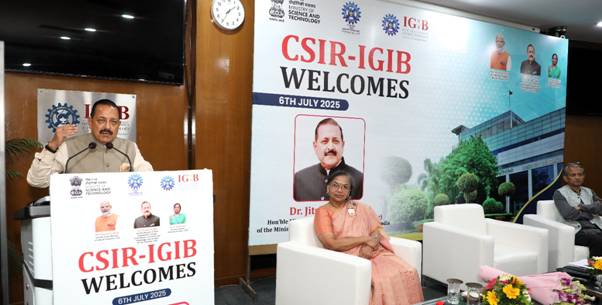
- 08 Jul 2025
In News:
The Union Minister of State (Independent Charge) for Science & Technology recently inaugurated the Phenome India “National Biobank” at the CSIR-Institute of Genomics and Integrative Biology (IGIB).
About the National Biobank:
- The National Biobank will act as the backbone of a nationwide cohort study, aimed at collecting comprehensive genomic, lifestyle, and clinical data from 10,000 individuals across India.
- It is a part of the Phenome India Project, focusing on long-term health tracking of participants over several years.
- Designed to reflect India's diverse geography, ethnicity, and socio-economic backgrounds, it ensures inclusivity in data collection.
- The biobank will enable researchers to:
- Uncover disease patterns and gene-environment interactions.
- Study individual responses to therapies within the Indian population context.
- Aid in early diagnosis and precision medicine, especially for complex diseases like:
- Diabetes
- Cancer
- Cardiovascular disorders
- Rare genetic conditions
Phenome India Project (PI-CheCK):
- Full Name: Phenome India – CSIR Health Cohort Knowledgebase (PI-CheCK)
- Launched by: Council of Scientific and Industrial Research (CSIR) on 7th December 2023
- Objective: To build India-specific risk prediction models for cardio-metabolic diseases, including:
- Diabetes
- Liver diseases
- Cardiac conditions
- Significance: India’s first pan-India longitudinal health monitoring study focused specifically on cardio-metabolic health.
- Sample Cohort: ~10,000 individuals (primarily CSIR employees, pensioners, and spouses) from 17 states and 24 cities.
- Data Collection Includes:
- Clinical questionnaires
- Lifestyle and dietary assessments
- Anthropometric measurements
- Imaging and scanning data
- Extensive biochemical and molecular data
C-FLOOD
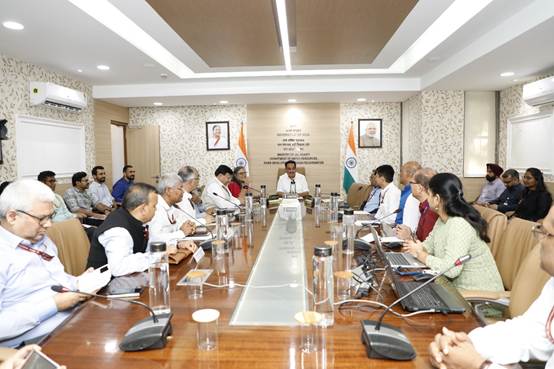
- 06 Jul 2025
In News:
In a significant advancement in disaster risk management, Union Minister of Jal Shakti Shri C.R. Patil inaugurated C-FLOOD, a Unified Inundation Forecasting System. Developed under the National Supercomputing Mission (NSM), C-FLOOD marks a pivotal step toward strengthening India's flood preparedness and mitigation strategy.
What is C-FLOOD?
C-FLOOD is a web-based, real-time flood forecasting platform designed to deliver two-day advance inundation forecasts at village-level resolution. It provides:
- Flood inundation maps
- Water level predictions
- Localized early warnings to support disaster response and planning.
Developing Agencies:
- Centre for Development of Advanced Computing (C-DAC), Pune
- Central Water Commission (CWC)
- National Remote Sensing Centre (NRSC)
Developed in collaboration with the Ministry of Jal Shakti, Ministry of Electronics & IT (MeitY), and Department of Science & Technology (DST).
Key Features:
- 2-Day Village-Level Forecasts: Localized and high-resolution predictions up to the gram panchayat level.
- Advanced 2-D Hydrodynamic Modelling: Simulations run on High-Performance Computing (HPC) systems under NSM.
- Multi-Basin Coverage: Initially operational in the Mahanadi, Godavari, and Tapi river basins, with future expansion planned.
- Unified Data Integration: Combines outputs from national and regional flood models into one platform.
- Disaster Portal Linkage: Designed for integration with the National Disaster Management Emergency Response Portal (NDEM).
- Climate-Adaptive Governance: Supports flood forecasting in regions vulnerable to climate-induced extreme weather events.
Strategic Importance:
- Disaster Risk Reduction: Enables timely warnings, efficient evacuations, and minimizes loss of life and property.
- Scientific & Operational Integration: Bridges hydrological modelling with on-ground responses.
- Supports Viksit Bharat @2047 Vision: Contributes to climate-resilient water governance.
- Promotes Inter-Agency Synergy: Encourages coordination among CWC, C-DAC, NRSC, and disaster management bodies.
Government Directions and Future Path:
During the inauguration, the Union Minister emphasized:
- Wide dissemination of C-FLOOD to enhance public awareness.
- Expansion to all major river basins through comprehensive inundation studies.
- Improved accuracy via satellite data validation and ground-truthing.
- Integration with NDEM for real-time emergency response.
The minister lauded the collaborative spirit of CWC, C-DAC, and NRSC, and reaffirmed the government's commitment to proactive and technology-driven disaster management.
Russia recognizes Taliban-led Government in Afghanistan
- 06 Jul 2025
In News:
Russia has become the first nation to officially recognize the Taliban-led Islamic Emirate of Afghanistan, formalizing diplomatic relations with the regime that took control in 2021.
Context and Significance:
- This development comes amid limited international recognition of the Taliban government, which took over Kabul in 2021 after the withdrawal of U.S. and NATO forces.
- Russia’s move could reshape regional diplomacy in Central and South Asia, potentially influencing other neighboring powers like China, Iran, and the UAE, which has also shown warming ties.
- The decision also reflects Russia's strategic interests in counterterrorism cooperation, regional stability, and its broader geopolitical competition with the West.
Profile of Russia
Geographical Overview:
- Continent: Northern Eurasia, straddling both Eastern Europe and Northern Asia
- Area: Approximately 17 million square kilometers, making it the largest country in the world
- Time Zones: Spans across 11 time zones
- Capital City: Moscow
Neighbours and Boundaries:
- Land Borders: Shares land borders with 16 countries—more than any other nation:
- In Europe: Norway, Finland, Estonia, Latvia, Lithuania, Poland (via Kaliningrad), Belarus, Ukraine
- In Asia: Georgia, Azerbaijan, Kazakhstan, Mongolia, China, North Korea
- Maritime Borders:
- United States (via the Bering Strait)
- Japan (via the Sea of Okhotsk)
- Major Mountain Ranges:
- Ural Mountains: Traditional boundary between Europe and Asia
- Caucasus Mountains: Includes Mount Elbrus, Europe’s highest peak
- Altai, Sayan, and Kamchatka ranges in Siberia
- Key Rivers and Lakes:
- Volga River: Longest river in Europe
- Lena, Yenisei, and Ob Rivers: Flow through Siberia into the Arctic Ocean
- Lake Baikal: World’s deepest and oldest freshwater lake
- Lake Ladoga: Largest lake in Europe by area
- Climatic and Vegetation Zones:
- Encompasses tundra, taiga (boreal forest), steppes, and semi-deserts
- Permafrost regions in Siberia restrict infrastructure and habitation
Chemical Industry – Powering India’s Participation in Global Value Chains
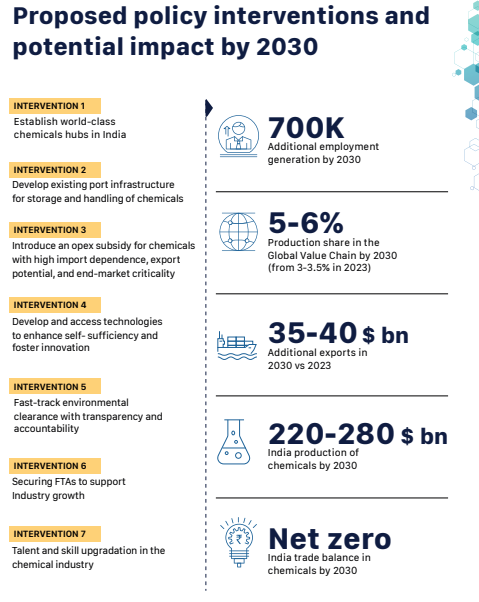
- 05 Jul 2025
In News:
NITI Aayog has released a comprehensive report envisioning India’s transformation into a global chemical manufacturing hub with a projected 12% share in global value chains (GVCs) and USD 1 trillion in output by 2040.
Current Landscape of India’s Chemical Industry
- Significant Economic Contributor: India is the 6th largest chemical producer globally and 3rd in Asia, contributing over 7% to manufacturing GDP. Key linkages: Pharmaceuticals, textiles, agriculture, and construction.
- Fragmented Sector Structure: Dominated by MSMEs, the sector suffers from lack of integrated value chains and modern infrastructure. Example: Cluster-based growth is concentrated in Gujarat, Maharashtra, and Tamil Nadu.
- Low Global Integration: India’s 3.5% share in global chemical value chains reflects weak backward integration and poor export competitiveness. The trade deficit in 2023 was USD 31 billion.
- High Import Dependence: Heavy reliance on China and Gulf countries for feedstocks and specialty chemicals. Example: Over 60% of critical Active Pharmaceutical Ingredients (APIs) are sourced from China.
- Negligible R&D Investment: India invests only 0.7% of industry revenue in R&D, far below the global average of 2.3%, limiting innovation in green and specialty chemicals.
- Regulatory and Procedural Hurdles: Environmental clearance (EC) delays (up to 12–18 months) and procedural bottlenecks lead to cost and time overruns.
- Skilling Deficit:
A 30% shortage of skilled professionals in green chemistry, process safety, and nanotechnology. Example: ITIs and vocational programs lag behind industry requirements.
Emerging Opportunities
- Green Chemistry Revolution: Global shift toward sustainable chemicals presents new market opportunities.
- Geopolitical Realignment: Rising distrust of China globally enables India to emerge as an alternate supplier.
- FTA Leverage: India’s Free Trade Agreements (FTAs) with UAE, EU, and ASEAN can enhance tariff-free access to major markets.
- Make in India Ecosystem: Policy support through PLI schemes, Petroleum, Chemicals and Petrochemicals Investment Regions (PCPIRs), and chemical parks.
- Job Creation Potential: The sector could generate 7 lakh skilled jobs by 2030, particularly in petrochemicals, research, and logistics.
Persistent Challenges
- Feedstock Vulnerability: Over-dependence on crude oil and naphtha imports poses price and supply risks.
- Outdated Industrial Clusters: Legacy clusters lack modern safety systems, storage infrastructure, and waste treatment facilities.
- High Logistics Costs: Freight costs are 2–3 times higher than global averages, reducing export competitiveness.
- Regulatory Complexities: Absence of single-window clearances, frequent policy shifts, and inter-state inconsistencies deter investments.
- Weak Industry-Academia Linkages: Poor collaboration leads to low patent output and limited skill development.
NITI Aayog’s Recommendations
- Develop World-Class Chemical Hubs: Upgrade existing clusters and establish empowered committees. Suggested hubs: Paradeep, Dahej, Vizag. Introduce a dedicated Chemical Infrastructure Fund.
- Opex-Based Incentives: Offer operational subsidies linked to import substitution and export potential.
- Boost Technology Access & R&D:
- Establish an industry-academia interface under the Department of Science and Technology (DST).
- Enable technology transfer from global MNCs.
- Streamline Environmental Clearances:
- Simplify processes via DPIIT audit mechanisms.
- Ensure greater transparency and faster approvals.
- Strengthen Skill Development:
- Expand and modernize ITIs and specialized institutes.
- Introduce tailored courses in polymer science, green chemistry, and process safety.
- Negotiate Chemical-Specific FTAs:
- Incorporate product-specific clauses.
- Simplify rules of origin and documentation processes.
Research Development and Innovation (RDI) Scheme
- 04 Jul 2025
In News:
The Union Cabinet, chaired by the Prime Minister, has approved the Research Development and Innovation (RDI) Scheme with a corpus of ?1 lakh crore to strengthen India’s innovation ecosystem and boostprivate sector R&D investments.
Objective of the RDI Scheme
The scheme is designed to:
- Provide long-term financing or refinancing at low or nil interest rates
- Stimulate private sector investment in R&D and innovation
- Overcome existing funding challenges for private research
- Support sunrise and strategic sectors to drive:
- Innovation
- Technology adoption
- National competitiveness
- Economic security and self-reliance
Key Aims
- Encourage private sector participation in high-TRL (Technology Readiness Level) R&D projects
- Fund transformative innovation in sunrise domains
- Enable acquisition of critical and strategic technologies
- Facilitate the establishment of a Deep-Tech Fund of Funds (FoF)
Funding Structure
The RDI Scheme will operate on a two-tiered funding mechanism:
First Tier: Special Purpose Fund (SPF) under ANRF
- Housed within the Anusandhan National Research Foundation (ANRF)
- Acts as the primary custodian of funds
Second Tier: Fund Allocation & Disbursal
- SPF will allocate funds to multiple 2nd-level fund managers
- Mode of financing:
- Long-term concessional loans (low or nil interest)
- Equity financing, particularly for startups
- Contributions to Deep-Tech Fund of Funds (FoF) or other RDI-focused FoFs
Governance & Implementation
- Governing Board of ANRF (chaired by the Prime Minister): Provides strategic direction
- Executive Council (EC) of ANRF:
- Approves scheme guidelines
- Recommends fund managers
- Determines project types and sectors
- Empowered Group of Secretaries (EGoS):
- Led by the Cabinet Secretary
- Approves scheme changes, sectors, fund managers
- Monitors performance of the scheme
- Nodal Department:Department of Science and Technology (DST) is the nodal ministry for implementation.
E-Voting System

- 04 Jul 2025
In News:
For the first time in India, e-voting through a mobile app was used in the Bihar municipal elections (June 28, 2025) for six municipal councils in Patna, Rohtas, and East Champaran districts.
About the E-Voting System
- App Used:E-SECBHR, developed by Centre for Development of Advanced Computing (C-DAC)
- Target Groups:
- Senior citizens
- Persons with disabilities
- Pregnant women
- Others unable to reach polling booths
How It Works
- Installation: App available for Android users.
- Registration: Voter must link mobile number as per the electoral roll.
- Verification: Through voter ID number and facial recognition.
- Voting: Vote via app or Bihar Election Commission’s website on polling day.
Security Measures to Ensure Fairness
- Limited Logins: One mobile number can be used by only two registered voters.
- Facial Recognition: Used to verify identity during login and voting.
- Blockchain Technology:
- Ensures immutability of vote data.
- Prevents tampering or alteration of records.
National Turmeric Board Inaugurated in Telangana
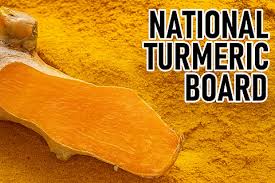
- 03 Jul 2025
In News:
The Union Home Minister inaugurated the headquarters of the National Turmeric Board in Nizamabad, Telangana, addressing a long-standing 40-year demand of turmeric farmers in the region.
About the National Turmeric Board (NTB):
- Established by: Government of India
- Status: Statutory body
- Location:Headquartered in Nizamabad, Telangana – popularly known as the "Turmeric Capital of India"
Administrative Oversight:
- Functions under the Ministry of Commerce and Industry
- Operates in coordination with the Ministries of AYUSH, Agriculture, Pharmaceuticals, and Cooperation
Governing Composition:
- Chairperson appointed by the Central Government
- Secretary from the Department of Commerce
- Members from:
- Relevant central ministries
- Turmeric-producing states (e.g., Telangana, Maharashtra, Meghalaya)
- Farmer groups, exporters, and research institutions
Objectives of the Board:
- Promote value addition, branding, and marketing of turmeric products
- Ensure better prices to farmers by reducing intermediaries
- Promote global recognition of turmeric’s medicinal value
- Upgrade logistics and quality infrastructure to meet global standards
- Support training, research, and skill development in turmeric cultivation and utilization
Key Functions:
- Develop an end-to-end export ecosystem for turmeric
- Promote GI-tagged organic turmeric in international markets
- Ensure compliance with global food and safety standards
- Coordinate with the Spices Board, National Cooperative Exports Ltd., and other cooperatives for export promotion
Turmeric in India: An Overview
Botanical Information:
- Scientific Name:Curcuma longa
- A rhizomatous herbaceous plant, valued for its use in cooking, dyeing, and traditional medicine
- Commonly known as the "Golden Spice"
Agro-Climatic Conditions:
- Grown in tropical climates, requires 20–30°C temperature and high rainfall
- Prefers well-drained loamy soils
- Cultivated under both rain-fed and irrigated conditions
Production and Exports (2022–23):
- Area under cultivation: 3.24 lakh hectares
- Total production: 11.61 lakh tonnes
- India's global share: Over 75% of world turmeric production
- Varietal diversity: Over 30 indigenous varieties cultivated
- Exports: 1.53 lakh tonnes valued at USD 207.45 million
- Target: USD 1 billion in turmeric exports by 2030
- Top export destinations:Bangladesh, UAE, USA, Malaysia
CRISPR-Based Gene Switch for Climate-Resilient Agriculture
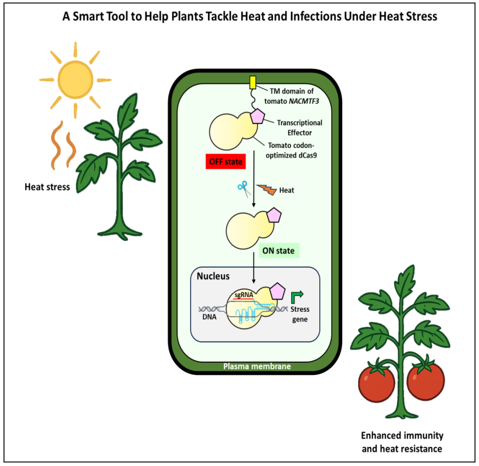
- 03 Jul 2025
In News:
Scientists at the Bose Institute, Kolkata, under the Department of Science and Technology (DST), have developed a modified CRISPR-based molecular tool to enhance plant resilience against heat stress and bacterial infections. The research is published in the International Journal of Biological Macromolecules.
What is the Innovation?
- The tool is a modified version of the CRISPR system called dCas9 (dead Cas9), which does not cut DNA.
- Instead, it functions as a stress-responsive gene switch, turning defense and heat-tolerance genes on or off only when the plant is under stress (e.g., high temperature or pathogen attack).
How Does It Work?
- The switch is held outside the plant cell’s nucleus using a tomato-derived protein domain (NACMTF3 TM domain).
- Under stress conditions, such as heat waves or bacterial infection, the tether is released.
- The dCas9 switch then enters the nucleus, activating genes that help the plant combat the stress.
Key Functional Genes Activated:
|
Gene |
Function |
|
CBP60g, SARD1 |
Activate immune response to bacterial infection (e.g., Pseudomonas syringae) |
|
NAC2, HSFA6b |
Enhance heat tolerance, retain water, and improve overall health |
Salient Features of the Tool:
- Non-invasive: Unlike traditional CRISPR, this version does not edit the DNA, making it safer and more acceptable.
- Energy-efficient: The switch is activated only when needed, minimizing unnecessary energy use by the plant.
- Dual Protection: Shields plants from both heat stress and pathogenic infections.
- Eco-friendly and crop-compatible: Based on naturally occurring proteins, tested successfully in tomato, potato, and tobacco.
Significance and Impact:
- Climate-Resilient Agriculture: Helps plants survive in rising temperatures and unpredictable weather.
- Food Security: Boosts productivity in solanaceous crops like tomato, potato, brinjal, and chilli.
- Smart Farming Solution: Offers a model for sustainable and precision agriculture globally.
- Global Applicability: Can be adapted to other food crops affected by climate change and disease outbreaks.
Hong Kong International Convention (HKC)
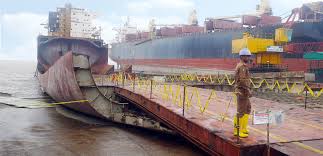
- 03 Jul 2025
In News:
The Hong Kong International Convention (HKC) for the safe and environmentally sound recycling of ships officially came into force on June 26, 2025.
About HKC:
- The HKC is a global treaty adopted under the aegis of the International Maritime Organization (IMO) to regulate the safe and environmentally sustainable recycling of ships that have reached the end of their operational life.
Objectives:
- Protect human health, especially that of shipbreaking workers.
- Prevent environmental pollution during ship dismantling.
- Control and manage hazardous materials such as asbestos, heavy metals, and hydrocarbons.
- Ensure safe waste handling and disposal practices in recycling yards.
Key Provisions:
- Inventory of Hazardous Materials (IHM):Ships must maintain an IHM listing all hazardous substances on board.
- Ship Recycling Plan (SRP):A certified SRP must be approved before the ship is sent for dismantling.
- Recycling Completion Certificate:Recycling facilities must issue this certificate within 14 days of dismantling completion.
- Third-Party Audits and Certification:Classification societies recognized by the IMO will conduct compliance audits and issue relevant certifications.
- Authorized Recycling Yards:The convention promotes the use of regulated and approved facilities for ship recycling to ensure compliance with international safety and environmental norms.
Significance:
- Strengthens global maritime safety and sustainable shipbreaking practices.
- Encourages modernization and regulation of recycling yards, especially in developing countries like India and Bangladesh.
- Aligns ship recycling with UN Sustainable Development Goals (SDGs), particularly those on health, environment, and decent work.
Operation Deep Manifest
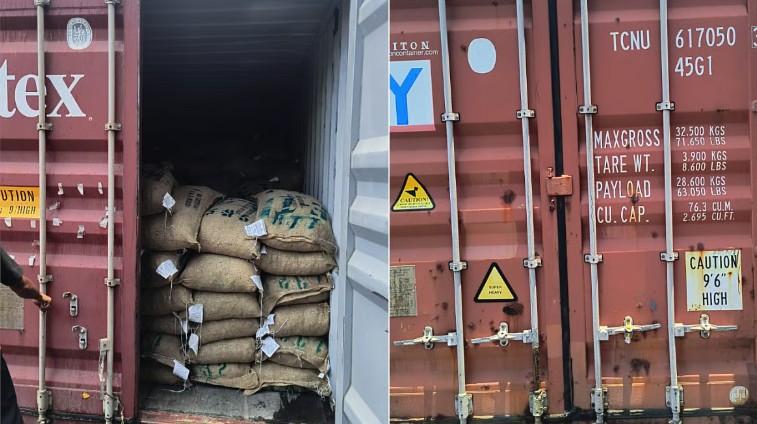
- 03 Jul 2025
In News:
The Directorate of Revenue Intelligence (DRI), under the Central Board of Indirect Taxes and Customs (CBIC), Ministry of Finance, launched “Operation Deep Manifest”, resulting in the seizure of Pakistani-origin goods worth ?9 crore.
Key Highlights:
- Seizure Details:39 containers carrying 1,115 metric tonnes of goods—primarily dry dates—were intercepted at Nhava Sheva Port. These goods were falsely declared as originating from the UAE.
- Route Manipulation:The consignments were illicitly routed via Dubai’s Jebel Ali Port after being shipped from Karachi, Pakistan, to obscure their true origin. Shipping documents were falsified and containers were switched during transshipment to evade detection.
- Violation of Policy:This seizure comes after India’s comprehensive ban on Pakistani-origin goods, which took effect on May 2, 2025, following the Pahalgam terror attacks. This replaced the earlier 200% customs duty imposed post-Pulwama (2019) and represents a zero-tolerance economic policy toward Pakistan.
- Financial and Security Links:Investigations uncovered financial linkages with Pakistani and UAE-based entities, pointing to an organized smuggling network with possible illicit financial flows and national security implications.
- Enforcement Action:A partner from one of the importing firms was arrested on June 26, and further criminal and financial investigations are ongoing.
Significance:
- National Security:Helps prevent economic infiltration from hostile states and curbs funding channels that could support anti-national activities.
- Trade Compliance:Acts as a deterrent against third-country transshipment—a common method to bypass sanctions or import bans.
- Tech-Driven Enforcement:Utilized document forensics, data analytics, and container surveillance to detect misdeclarations and track suspect cargo routes.
- Reinforces Policy Posture:Strengthens India's position of economic disengagement with Pakistan in response to cross-border terrorism.
Cell Broadcast System

- 03 Jul 2025
In News:
The Department of Telecommunications (DoT), in collaboration with the National Disaster Management Authority (NDMA), is piloting a Cell Broadcast (CB) system to enhance emergency communication and deliver real-time disaster alerts across India.
What is the Cell Broadcast System?
Cell Broadcasting is a telecommunication technology that enables mobile network operators to send geographically targeted text alerts to all mobile devices in a specific area. Unlike traditional SMS, CB messages are broadcast simultaneously to all phones within a cell tower’s coverage, ensuring instant delivery even during network congestion.
Key Features and Benefits:
- Instantaneous alerts during emergencies like earthquakes, tsunamis, lightning strikes, and industrial disasters.
- Indigenously developed by the Centre for Development of Telematics (C-DOT).
- Language inclusivity: Messages can be broadcast in multiple Indian languages.
- Particularly effective in high-density areas and during network overloads.
Integration with Existing Systems:
This CB system complements the existing Integrated Alert System (SACHET), which:
- Has delivered over 6,899 crore SMS alerts.
- Covers all 36 States and Union Territories.
- Supports 19 Indian languages.
- Is based on the Common Alerting Protocol (CAP) as recommended by the International Telecommunication Union (ITU).
Once fully deployed, the Cell Broadcast system will strengthen India’s disaster preparedness, ensuring wider, faster, and more inclusive dissemination of critical alerts.
India Energy Stack (IES)
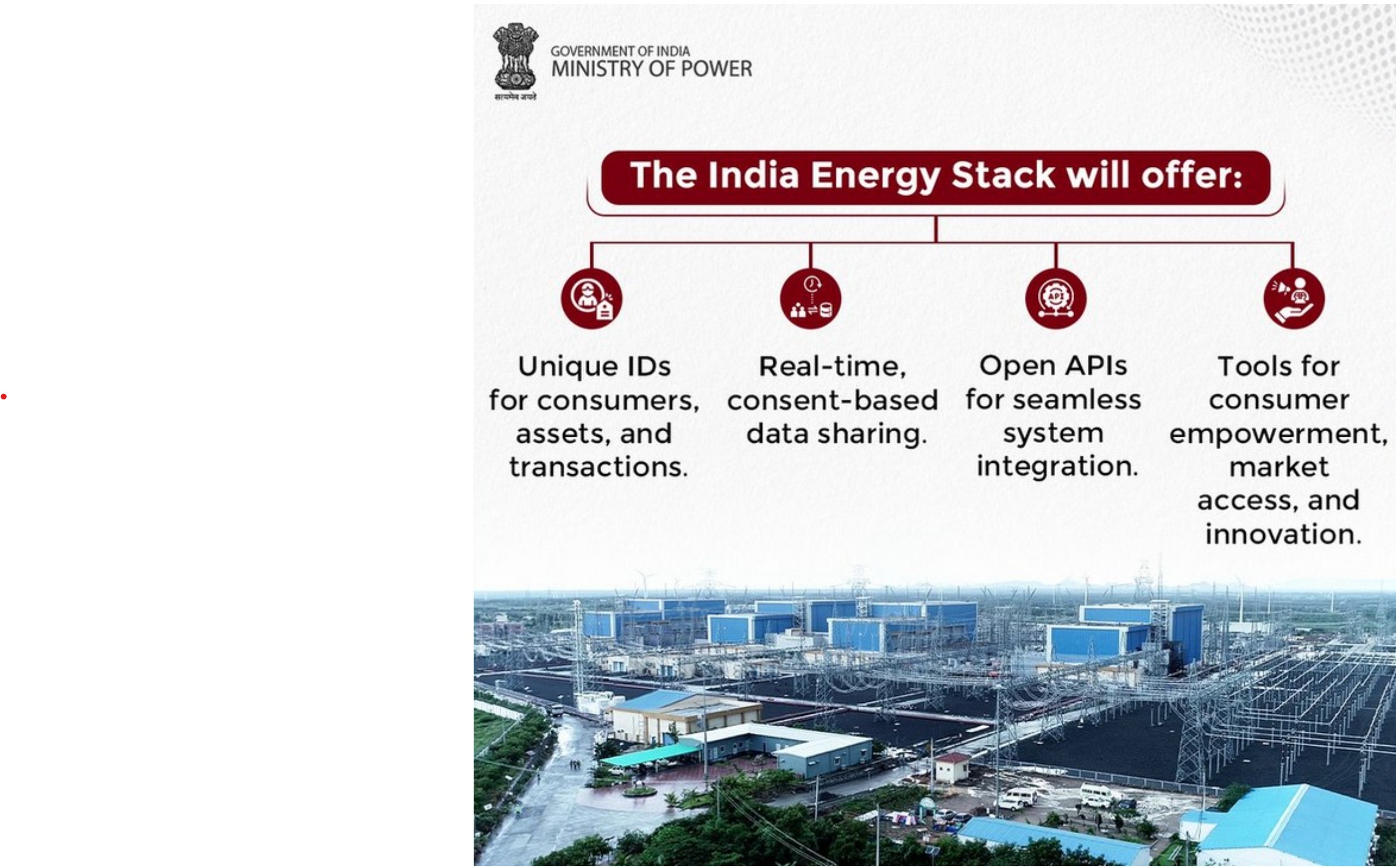
- 02 Jul 2025
In News:
In a transformative move aimed at digitising India’s power sector, the Ministry of Power has announced the conception of the India Energy Stack (IES) — a Digital Public Infrastructure (DPI) initiative designed to build a unified, secure, and interoperable digital ecosystem across the energy value chain.
This effort aligns with India’s goals of achieving a $5 trillion economy and meeting its Net Zero commitments, while addressing the growing complexities of a rapidly evolving energy landscape marked by renewables, electric vehicles, and consumer-centric markets.
What is India Energy Stack (IES)?
The India Energy Stack is envisioned as a standardised, open, and secure digital infrastructure to:
- Streamline operations in the power sector
- Empower consumers with access to real-time, consent-based data
- Integrate renewable energy into the national grid
- Enhance the efficiency of Distribution Companies (DISCOMs)
The initiative is spearheaded by the Ministry of Power, drawing inspiration from successful DPI models like Aadhaar (identity) and UPI (digital payments).
Core Features of IES
- Unique IDs: Assigned to consumers, assets, and energy transactions
- Real-time Data Sharing: Consent-based access for secure and accountable data exchange
- Open APIs: Enabling seamless integration across utility systems and third-party applications
- Consumer Empowerment Tools: Market access platforms, billing transparency, demand response options, and innovation support
- Interoperability: Standardised protocols for all stakeholders in the electricity ecosystem
Implementation Strategy
1. Proof of Concept (PoC) – 12 Months
A year-long pilot phase will test the India Energy Stack using real-world scenarios in partnership with selected utilities and DISCOMs.
2. Utility Intelligence Platform (UIP)
The UIP is a modular, analytics-driven application built on the India Energy Stack. It aims to:
- Provide real-time insights to utilities, policymakers, and regulators
- Enable smart energy management
- Enhance decision-making for grid operations and consumer services
3. Pilot Regions
The PoC will be conducted in collaboration with DISCOMs in:
- Mumbai
- Gujarat
- Delhi
Institutional Framework
- A dedicated Task Force has been established by the Ministry of Power.
- It includes experts from:
- Technology domain
- Power sector operations
- Regulatory bodies
- The Task Force will guide:
- System architecture design
- Pilot implementation
- National scale-up strategy
Expected Outcomes
- India Energy Stack White Paper for public consultation
- UIP deployment in pilot cities
- National roadmap for phased rollout of IES across all states and UTs
- Improved grid stability, energy access, and transparency in service delivery
- Enhanced integration of renewable energy sources into the mainstream grid
Significance for India’s Power Sector
The India Energy Stack has the potential to be a game-changer for the power sector, enabling:
- Modernisation of legacy systems
- Digital empowerment of consumers
- Efficient energy trading and billing
- Decentralised and democratised power governance
As India undergoes its green energy transition, IES will serve as the digital spine supporting clean, accountable, and consumer-centric power distribution.
At Sea Observer Mission

- 02 Jul 2025
In News:
In a major milestone for regional security, the QUAD nations — India, Japan, the United States, and Australia — have launched their first-ever 'At Sea Observer Mission'. This cross-embarkation initiative, conducted under the Wilmington Declaration, seeks to deepen maritime interoperability, operational coordination, and domain awareness in the Indo-Pacific region.
This move signifies the QUAD’s growing shift from diplomatic coordination to practical maritime collaboration, in line with the vision outlined at the QUAD Leaders’ Summit in September 2024.
Key Features of the At Sea Observer Mission
- Participating Nations: India, Japan, USA, and Australia — the four QUAD countries.
- Agencies Involved:
- Indian Coast Guard (ICG)
- Japan Coast Guard (JCG)
- United States Coast Guard (USCG)
- Australian Border Force (ABF)
- Vessel Involved:USCGC Stratton (US Coast Guard Cutter) currently en route to Guam.
- Observer Teams: Two officers from each country, including women officers, embarked for the mission.
- Format:Cross-embarkation, where officers from different countries are hosted on board a partner nation's ship to enable firsthand operational learning.
Objectives and Strategic Relevance
- Strengthening Maritime Security
- Promotes collective surveillance, intelligence sharing, and maritime law enforcement.
- Enhances preparedness against common threats such as illegal fishing, piracy, smuggling, and disaster response.
- Boosting Interoperability and Coordination
- Lays groundwork for real-time joint operations and coordinated patrols.
- Encourages standardization of practices and communication protocols across QUAD navies and coast guards.
- Upholding the Rules-Based Order: Reinforces commitment to a Free, Open, Inclusive, and Rules-Based Indo-Pacific, countering unilateral actions and grey-zone threats in the region.
Indian Perspective: SAGAR and IPOI
India’s participation in the mission reflects its broader strategic vision of SAGAR (Security and Growth for All in the Region). It also aligns with India’s leadership in the Indo-Pacific Oceans Initiative (IPOI), particularly in the pillars of:
- Maritime Security
- Capacity Building and Resource Sharing
- Disaster Risk Reduction and Management
- Maritime Ecology and Maritime Resources
India's active role demonstrates its commitment to multilateral maritime cooperation, gender inclusivity, and regional stability.
Long-Term Implications: Toward a 'QUAD Coast Guard Handshake'
The ‘At Sea Observer Mission’ represents a foundation for the future institutionalisation of QUAD maritime security cooperation, informally dubbed the ‘QUAD Coast Guard Handshake.’ This aims to:
- Foster trust and operational familiarity
- Improve collective resilience against emerging maritime challenges
- Create a responsive, inclusive, and rule-abiding Indo-Pacific maritime domain
Eight Years of GST
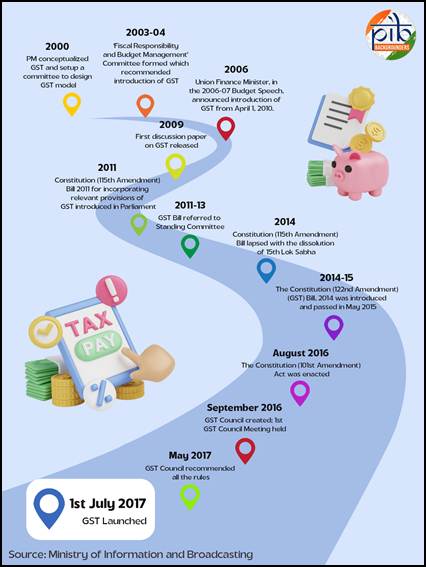
- 02 Jul 2025
In News:
The Goods and Services Tax (GST) was implemented on 1st July 2017, aiming to unify India’s fragmented indirect tax system into a single, nation-wide tax. It replaced multiple central and state levies such as excise duty, service tax, VAT, and others.
By simplifying the tax structure and improving transparency, GST aimed to enhance compliance, remove tax cascading, and create a common national market. As of 1st July 2025, GST has completed eight years.
Key Highlights of 2024–25
- In the financial year 2024–25, GST collections reached an all-time high of ?22.08 lakh crore, representing a growth of 9.4% over the previous year. The average monthly collection was ?1.84 lakh crore. The number of active GST taxpayers crossed 1.51 crore.
- According to the Deloitte GST@8 survey, 85% of respondents across industries reported a positive experience with GST, highlighting improvements in compliance, transparency, and ease of doing business.
Structure of the GST System
Components of GST
GST operates under a dual model:
- Central GST (CGST) and State GST (SGST) for intra-state transactions.
- Integrated GST (IGST) for inter-state transactions and imports.
Rate Structure
The GST Council has approved a multi-tier rate structure:
- Standard slabs of 5%, 12%, 18%, and 28% apply to most goods and services.
- Special lower rates include 0.25% on rough diamonds, 1.5% on cut and polished diamonds, and 3% on gold, silver, and jewellery.
- A Compensation Cess is levied on select goods such as tobacco, aerated drinks, and luxury cars to compensate states for revenue loss during the transition.
Key Features of GST
- Destination-Based Tax: GST is levied at the place of consumption, rather than origin. This ensures equitable revenue distribution and smooth credit flow across the supply chain.
- Input Tax Credit (ITC): Businesses can claim credit for taxes paid on inputs. This eliminates the cascading effect of taxes and reduces overall costs.
- Threshold Exemption: Small businesses with turnover below ?40 lakh for goods and ?20 lakh for services are exempt from GST, reducing the compliance burden on micro-enterprises.
- Composition Scheme: Businesses with turnover up to ?1.5 crore (goods) and ?50 lakh (services) can opt for a simplified tax scheme with fixed rates and minimal paperwork.
- Digital Compliance: All processes—from registration to return filing and payments—are conducted online through the GSTN portal. This digital-first approach enhances transparency and efficiency.
- Sector-Specific Exemptions: Essential sectors such as healthcare and education are either exempt or taxed at concessional rates to ensure affordability.
- Revenue Sharing: GST enables seamless credit transfers and transparent revenue sharing between the Centre and States, strengthening cooperative fiscal federalism.
Impact of GST
On MSMEs
- GST has provided major relief to micro, small, and medium enterprises by raising exemption thresholds and simplifying compliance. The introduction of the composition scheme allows them to pay tax at a flat rate with simplified filing.
- The Trade Receivables Discounting System (TReDS) has also expanded access to credit. As of May 2024, four digital platforms were operational, with over 5,000 buyers and 53 banks and 13 NBFCs registered as financiers.
- Other initiatives include quarterly return filing for businesses with turnover up to ?5 crore and SMS-based NIL return filing, reducing administrative hassle for small taxpayers.
On Consumers
- GST has benefited consumers by lowering tax rates on essential goods such as cereals, edible oils, sugar, and snacks. A study by the Finance Ministry found that GST led to an average household saving of 4% in monthly expenses.
- The expansion of the tax base from 60 lakh registered taxpayers in 2017 to over 1.51 crore in 2025 has enabled the government to rationalize rates further.
On the Logistics Sector
- The removal of inter-state check posts and the introduction of e-way bills have significantly improved logistics efficiency. Transport time has reduced by over 33%, and businesses no longer need to maintain warehouses in every state. This has facilitated the creation of centralized, tech-enabled supply chains.
Revenue Performance Over Time
Since its launch, GST collections have shown consistent growth. In 2020–21, collections stood at ?11.37 lakh crore. They rose to ?14.83 lakh crore in 2021–22, ?18.08 lakh crore in 2022–23, ?20.18 lakh crore in 2023–24, and finally to ?22.08 lakh crore in 2024–25. This reflects improved compliance, economic recovery, and digital enforcement.
GST Council and Its Role
Constitutional Basis: The GST Council was constituted under Article 279A of the Constitution following the passage of the 122nd Constitutional Amendment Act. The Council was formally set up after Presidential assent on 8th September 2016.
Composition: The Council includes:
- Union Finance Minister as Chairperson
- Union Minister of State (Finance/Revenue)
- State Finance Ministers
- Special representation in case of constitutional emergency (Article 356)
Major Decisions: Since its inception, the GST Council has met 55 times and taken several reform-oriented decisions:
- Introduced e-way bills, e-invoicing, and the QRMP scheme
- Reduced GST on under-construction affordable housing from 8% to 1%
- Lowered GST on electric vehicles from 12% to 5%, and exempted large EV buses
- Streamlined compliance through auto-populated returns and QR codes
- Rationalized GST slabs, reducing items in the 28% slab from 227 to 35
- Set up GST Appellate Tribunals with Principal Bench in New Delhi
- Rolled out Aadhaar-based biometric authentication and clarified rules for vouchers
- Recommended full GST exemption on gene therapy and a legal framework for Invoice Management System
Skills for the Future
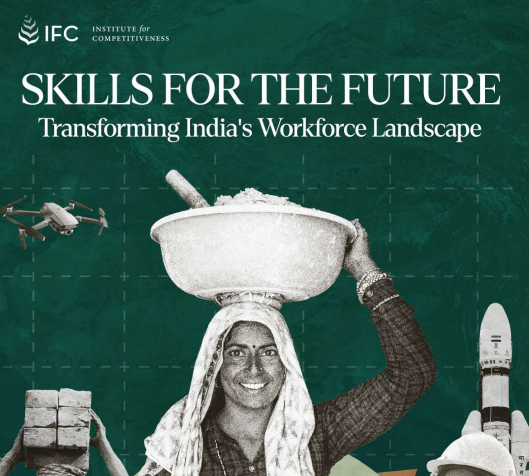
- 01 Jul 2025
In News:
Recently, theUnion Minister Jayant Chaudhary (MoS, Independent Charge – Ministry of Skill Development and Entrepreneurship, and MoS – Ministry of Education) unveiled the report "Skills for the Future: Transforming India’s Workforce Landscape", prepared by the Institute for Competitiveness (IFC). This data-driven report critically analyses India’s skilling ecosystem using PLFS 2023–24 and other datasets.
Significance of Skilling for India’s Development
- Demographic Dividend: India has one of the world’s youngest populations. Skilling is crucial to leverage this before population ageing sets in (by 2047).
- Economic Growth: A 1% rise in Gross Enrolment Ratio (GER) at the tertiary level increases GDP by 0.511% (Parika, 2020).
- Employment Creation: India needs to create 5 lakh non-farm jobs annually till 2030 (Economic Survey 2023–24).
- Global Competitiveness: Leadership in EVs, AI, biotechnology, and green energy demands a future-ready workforce.
Key Findings from the Report (PLFS 2023–24 Based)
1. Skill Distribution
- 88% of India’s workforce is in low-competency jobs (Skill Levels 1 & 2).
- Only 10–12% are employed in high-skill roles (Skill Levels 3 & 4).
- Only 4.5% of the workforce has received formal vocational training.
2. Education-Skill Mismatch
- Only 8.25% of graduates are in roles matching their skill level.
- Over 50% of graduates are employed in lower-skill jobs.
- Severe case of overqualification and underutilization of educational capital.
3. TVET and Sectoral Gaps
- Top 5 Sectors (66% of vocational enrolment):
- Electronics
- IT & ITeS
- Textiles & Apparel
- Healthcare & Life Sciences
- Beauty & Wellness
- Skill Deficits are critical in high-growth sectors like green tech, AI, biotech, and EVs.
4. Wage Inequality by Skill Level
Skill Level Avg. Annual Wage
Level 1 Rs.98,835
Level 2 Rs.1.26 lakh
Level 3 Rs.2.81 lakh
Level 4 Rs.3.94 lakh
46% of the workforce earns less than ?1 lakh/year, highlighting a major economic disparity.
5. Regional Disparities
- Low-Skilled States: Bihar, Assam (95% in Skill Levels 1 & 2)
- Higher-Skill States: Kerala, Chandigarh
- Migration and brain drain observed in low-skill, low-growth regions
Challenges Identified
- Skill-Education Mismatch: Graduates in low-skill jobs; vocational roles filled by underqualified informal workers.
- Weak TVET-Industry Linkage: Existing courses not aligned with Industry 4.0 or green economy needs.
- Low GER and Transition Dropout: Higher secondary GER at 57.56%, tertiary GER still below 30%.
- Gender & Social Exclusion: Low skilling access for women, SC/STs, rural youth.
- Data & Outcome Gaps: No central skill repository or real-time job-skill tracking.
Recommendations from the Report
- Institutional Reforms
- Launch a National Skill Gap Survey
- Establish a Central Skill Data Repository for real-time, evidence-based policymaking
- Curriculum & TVET Overhaul
- Update NCO codes (National Classification of Occupations)
- Integrate vocational training in schools
- Scale up PMKVY, NAPS, and credit-linked certifications
- Industry & Market Linkages
- Incentivise hiring of certified skilled labour
- Link industry wage structures to skill certifications
- Encourage industry-led training programs
- Targeted Inclusion & Regional Empowerment
- Empower State Skill Missions
- Prioritise high-potential regions and sectors
- Target women, SC/STs, informal sector workers
- Education Pipeline Strengthening
- Raise GER at higher secondary and tertiary levels
- Promote flexible, modular skilling programs for working populations and school dropouts
Digital Initiatives for Maritime Sector
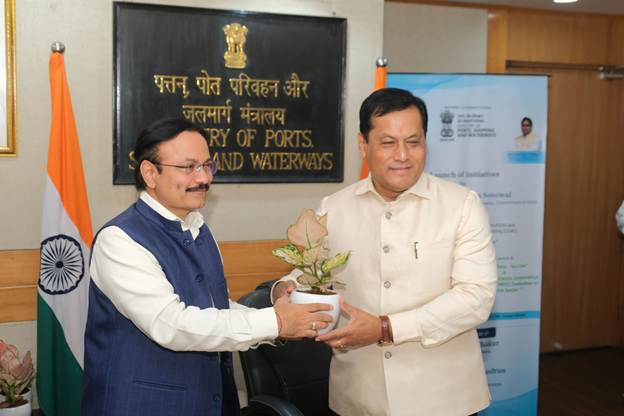
- 01 Jul 2025
In News:
Recently, the Union Minister for Ports, Shipping and Waterways, Shri Sarbananda Sonowal, launched a series of digital and sustainability-driven initiatives aimed at modernising India’s maritime sector. These reforms are aligned with the Maritime India Vision 2030 and Amrit Kaal Vision 2047.
Major Digital and Policy Initiatives Launched
1. Digital Centre of Excellence (DCoE)
- MoU signed between: MoPSW and Centre for Development of Advanced Computing (CDAC)
- Objective: Accelerate digital transformation across Indian ports
- Key Features:
- Application of AI, IoT, Blockchain to optimize maritime logistics
- Drive real-time operational upgrades
- Support green and sustainable port operations
- Strategic Alignment: Supports Atmanirbhar Bharat, Viksit Bharat @2047
2. SAGAR SETU Platform
- Type: Unified digital interface for maritime trade and EXIM operations
- Go-Live Date: 26th June 2025
- Integration: Connects 80+ ports and 40+ stakeholders
- Objective:
- Streamline cargo and vessel documentation
- Enable paperless, seamless, and transparent logistics
- Improve Ease of Doing Business (EoDB)
- Linked with: PM Gati Shakti National Master Plan
3. DRISHTI Framework
- Full Form: Data-driven Review Institutional System for Tracking Implementation
- Purpose: Real-time monitoring of projects under Maritime India Vision 2030
- Key Pillars:
- KPI Monitoring
- Progress & Achievements Tracking
- Organisational Oversight
- Functional Cell Coordination
- Strategic Value: Informed decision-making, faster project delivery
4. Standardised Scale of Rates (SOR) Template for Major Ports
- Objective: Standardise port tariffs to remove inconsistencies and improve transparency
- Features:
- Uniform structure for port tariffs
- Digitally comparable rates across ports
- Ports retain flexibility for local economic conditions
- Expected Impact:
- Enhances investor confidence
- Improves user experience
- Aligns with global maritime practices
Sustainability & Clean Energy: Hydrogen Transition Roadmap
Gateway to Green Report
Title: Gateway to Green — Assessing Port Readiness for Green Hydrogen Transition in India
- Released by: Ministry of Ports in collaboration with the Indian Ports Association (IPA)
- Objective: Transform Indian ports into green hydrogen hubs by 2030
- Strategic Goals:
- Produce 5 million tonnes of Green Hydrogen by 2030
- Develop infrastructure for production, storage, and export
- Leverage India’s maritime geography for clean energy leadership
- Targeted Ports for Hydrogen Transition:
- V.O. Chidambaranar Port
- Paradip Port
- Deendayal Port
- Jawaharlal Nehru Port
- Mumbai Port
- Cochin Port
- Key Action Areas:
- Land allocation for hydrogen projects
- Demand stimulation and investor facilitation
- International collaborations for knowledge and finance
- Shared infrastructure models
Strategic Relevance for India
- Economic Impact:
- Enhances trade competitiveness and reduces logistics cost
- Modernises infrastructure to global benchmarks
- Boosts Make in India and port-led development
- Digital Governance:
- Promotes data-driven decision-making
- Enables real-time monitoring and performance tracking
- Environmental Sustainability:
- Aligns with India’s National Hydrogen Mission
- Ports act as catalysts for clean energy transition
International Potato Research Center
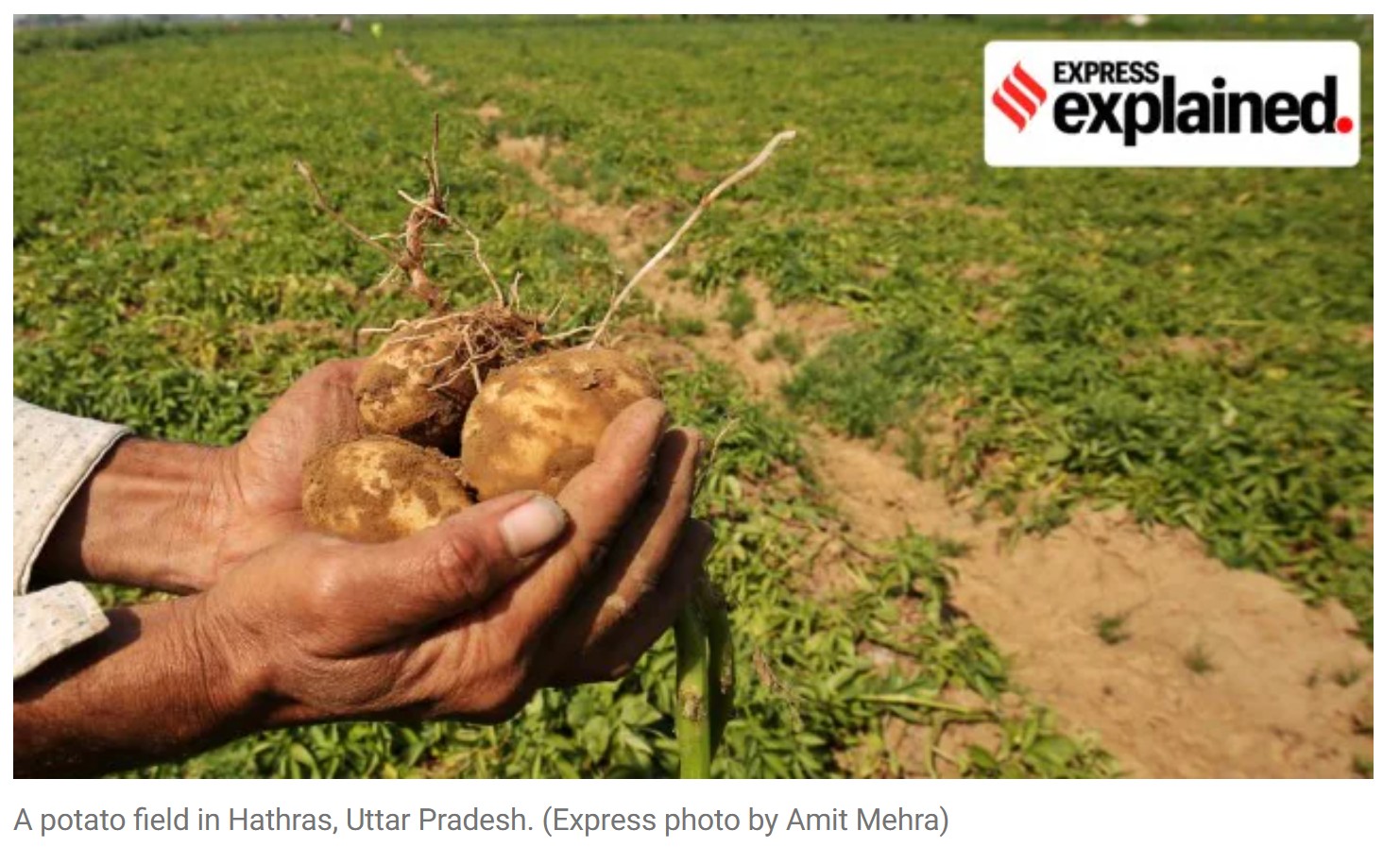
- 01 Jul 2025
In News:
- On June 25, 2025, the Union Cabinet approved the establishment of the CIP-South Asia Regional Center (CSARC) in Agra, Uttar Pradesh.
- The center will function as a regional wing of the International Potato Center (CIP) headquartered in Lima, Peru.
About CIP
- Founded: 1971
- Headquarters: Lima, Peru
- Focus Crops: Potato, Sweet Potato, and Andean roots & tubers
- Global Presence: South America, Africa, Asia
- India Operations: Since 1975, through partnership with ICAR
About CIP-South Asia Regional Center (CSARC)
- Location: Singna, Agra district, Uttar Pradesh
- Land Provided: 10 hectares (by UP Government)
- Total Project Cost: ?171 crore
- Indian Contribution: ?111.5 crore
- CIP Contribution: ?60 crore
- Implementing Ministry: Ministry of Agriculture & Farmers’ Welfare
Objectives of the Center
- Improve productivity of potato and sweet potato
- Promote climate-resilient, disease-free varieties
- Enhance post-harvest management and value addition
- Boost domestic seed production
- Support exports and food processing industries
- Increase farmer income, employment, and nutritional security
Why is this Significant?
- Potato is the 3rd most consumed crop globally (after rice and wheat)
- Sweet potato ranks 6th globally (after maize and cassava)
- India is the 2nd largest producer and consumer of potato
- Current average yield in India:
- Potato: ~25 tonnes/ha (Potential: >50 tonnes/ha)
- Sweet Potato: ~11.5 tonnes/ha (Potential: ~30 tonnes/ha)
- Establishment of CSARC will:
- Reduce dependency on seed imports
- Improve access to global germplasm
- Help bridge the yield gap
Global and National Context
- China is the largest potato producer (78.24 million tonnes, 2020)
- India is second (51.3 million tonnes, 2020)
- Top Potato-Producing States in India (2020–21):
- Uttar Pradesh (~15 million tonnes)
- West Bengal (~15 million tonnes)
- Bihar (~9 million tonnes)
Related Agricultural Research Institutions in India
- ICAR-CPRI, Shimla – Potato research
- ICAR-CTCRI, Thiruvananthapuram – Sweet potato and tuber crops
- IRRI-SARC, Varanasi – Regional center of International Rice Research Institute
CIP Centers Outside Peru
- China Center for Asia-Pacific (CCCAP) – Established in 2017 in Beijing, China
- India's CSARC (Agra) will be the second major CIP center outside Peru
Operation Bihali
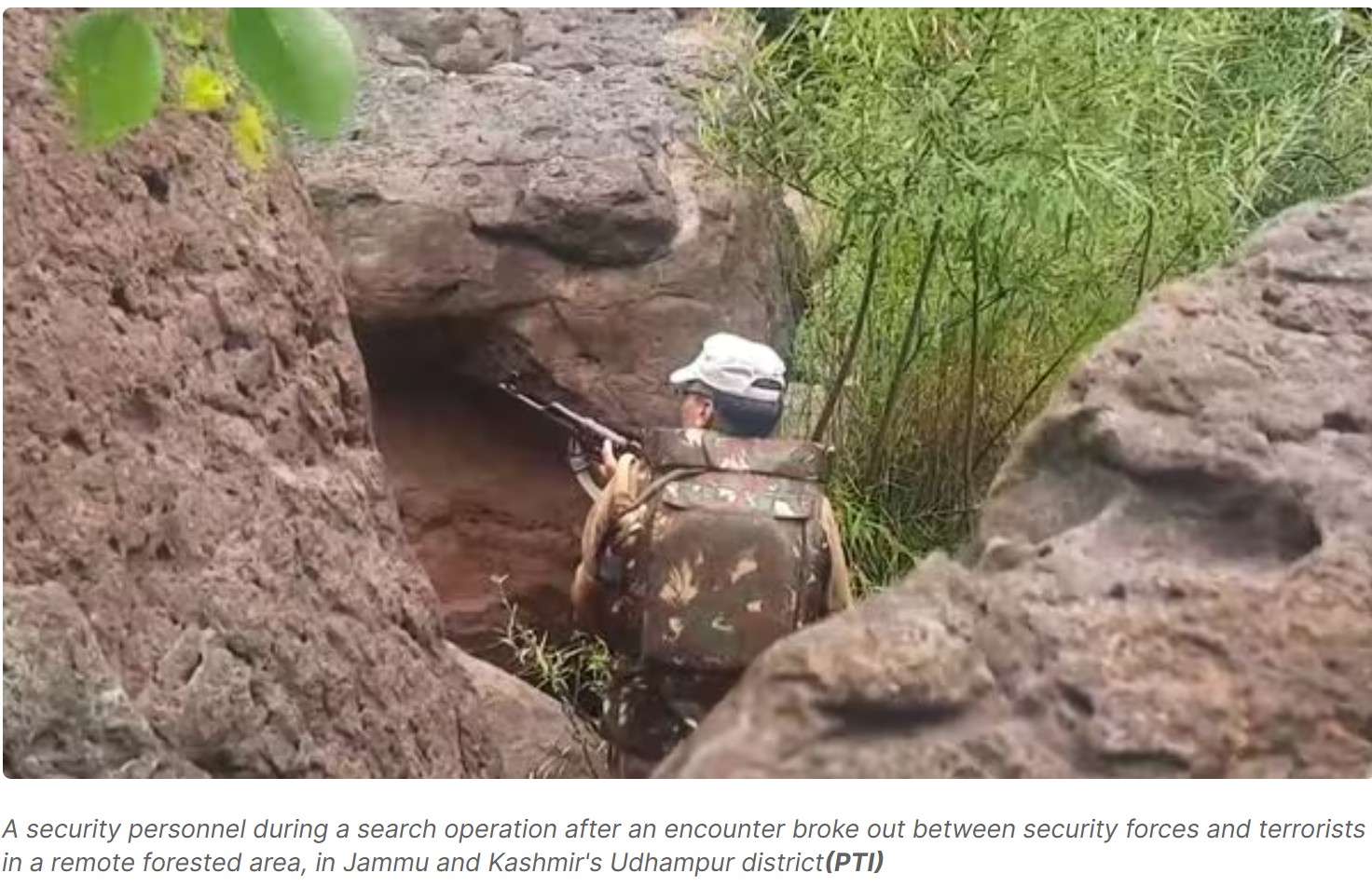
- 01 Jul 2025
In News:
A Jaish-e-Mohammad (JeM) terrorist was neutralized and three others were cornered in Operation Bihali, a high-risk counter-terror operation conducted in the Basantgarh area of Udhampur district, Jammu & Kashmir.
About Operation Bihali
Aspect Details
Type of Operation Counter-terrorism
Objective Neutralize a group of 4 JeM terrorists and prevent cross-border attacks
Location Basantgarh region, Udhampur district, J&K
Launched by Jointly by Indian Army Para Commandos and J&K Police
Operational Command Under the White Knight Corps
Intelligence Basis Based on 12 months of surveillance identifying the terrorist group
Key Significance
- Neutralization of JeM Threat: Thwarted potential attacks and ensured regional stability.
- Intelligence-Led Operation: Reflects enhanced surveillance and coordination between civil and military forces.
- Strategic Impact:
- Disrupted terror infiltration routes along sensitive zones.
- Reinforced India's proactive counter-insurgency posture in Jammu & Kashmir.
- Strengthened local security infrastructure in vulnerable border districts.
19th National Statistics Day
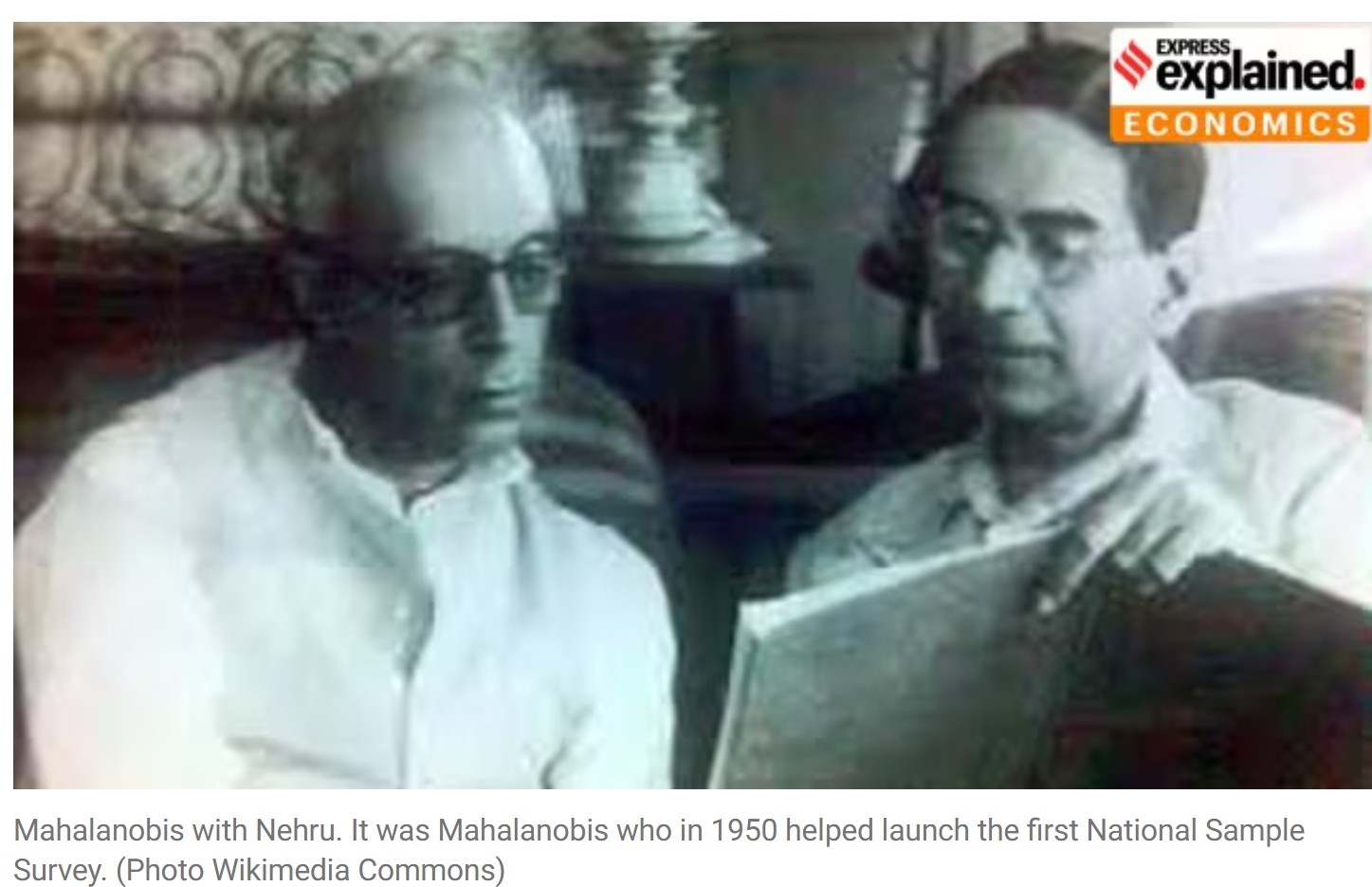
- 01 Jul 2025
In News:
MoSPI celebrates 19th Statistics Day honouring Prof. P.C. Mahalanobis and 75 years of National Sample Survey.
Key Highlights:
June 29 is observed as National Statistics Day in India to commemorate the birth anniversary of Prof. Prasanta Chandra Mahalanobis (1893–1972), widely regarded as the Father of Indian Statistics. The 2025 theme is "75 Years of National Sample Survey (NSS)".
The day is dedicated to promoting the role of statistics in nation-building and policy formulation, especially among the youth.
Key Contributions of P.C. Mahalanobis
1. Architect of India’s National Sample Survey (NSS)
- In 1950, Prof. Mahalanobis pioneered the National Sample Survey, India's first scientific and large-scale household data collection system.
- NSS is a large-scale, nationwide socio-economic data collection initiative conducted by the National Sample Survey Office (NSSO) under the Ministry of Statistics and Programme Implementation (MoSPI).
- Key Objectives of the NSS: Generate high-quality data to inform public policy, planning, and developmental programs.Conduct household surveys on:
- Consumption expenditure
- Employment & unemployment
- Health and education
- Migration and the informal sector
- Undertake the Annual Survey of Industries (ASI) to evaluate industrial performance.
- Support the agricultural sector by supervising crop area and yield estimation.
- Provide price statistics for rural and urban India to monitor inflation and cost-of-living changes.
- Key Features of the NSS
- All-India Scientific Coverage: Surveys conducted in both rural and urban areas using stratified multi-stage sampling methods.
- Organizational Structure – Four Major Divisions
Division Function
Survey Design & Research Division (SDRD) Survey planning, design, and methodology (HQ: Kolkata)
Field Operations Division (FOD) Data collection via 170+ regional offices (HQ: Delhi/Faridabad)
Data Processing Division (DPD) Data validation, tabulation, processing for surveys like PLFS & ASI
Survey Coordination Division (SCD) Coordinates survey activities and publishes Sarvekshana journal
- Multi-Thematic and Integrated Surveys
- Consumption patterns
- Employment trends (via Periodic Labour Force Survey - PLFS)
- Health and morbidity
- Education, migration, and social welfare indicators
- Support for Agriculture and Industry: Strengthens crop statistics and supports the ASI Web Portal for industrial data validation.
- Digital Integration & Real-Time Processing:Modernization efforts include urban sampling frame maintenance, tablet-based data collection, and real-time monitoring tools.
2. Mahalanobis Distance (1936)
- A multivariate statistical measure used to identify outliers and data anomalies.
- It quantifies the distance of a data point from a distribution, factoring in correlations between variables.
- Widely applied in fields such as public health, market research, and machine learning.
3. Flood Control and Environmental Planning
- In the 1920s, Mahalanobis used historical data to guide flood mitigation in Bengal and Odisha.
- His studies disproved incorrect assumptions (e.g., rising river beds) and recommended drainage improvements and dam construction.
- His early estimates contributed to the Hirakud Hydroelectric Project, inaugurated in 1957.
4. Institution Building: Founder of ISI & Sankhya Journal
- Founded the Indian Statistical Institute (ISI) in Kolkata in 1931, a premier research institute for statistics and mathematics.
- Launched ‘Sankhya’, India’s first statistical journal, fostering academic and applied research.
5. Role in National Planning & Technology Advocacy
- Chief architect of the Second Five-Year Plan, which introduced the Mahalanobis Model — emphasizing heavy industries and public sector-led growth.
- Advocated for digital computing in India. However, during the Cold War, the U.S. denied India access to the UNIVAC computer, fearing Mahalanobis’s pro-Soviet leanings.
Biographical Snapshot
Attribute Details
Born 29 June 1893, Kolkata (then Calcutta)
Education Presidency College; King's College, Cambridge
Field Statistics, Economic Planning, Data Science
Key Institutions Indian Statistical Institute (ISI), NSS, Planning Commission
Died 28 June 1972
Banakacherla Reservoir Project Dispute
- 30 Jun 2025
In News:
A fresh inter-state water dispute has surfaced between Telangana and Andhra Pradesh, with Telangana accusing Andhra Pradesh of violating provisions of the Andhra Pradesh Reorganisation Act, 2014 through its proposed Banakacherla Reservoir Project.
About the Banakacherla Reservoir Project
- Location: Banakacherla, Nandyal district, Andhra Pradesh
- Implementing State: Andhra Pradesh
- Objecting State: Telangana
- Purpose: To divert surplus Godavari river water to the drought-prone Rayalaseema region via the Krishna river system.
Key Features of the Project:
River Diversion and Infrastructure Upgrades:
- Polavaram Right Main Canal capacity to be increased from 17,500 to 38,000 cusecs.
- Thatipudi Lift Canal capacity to be enhanced from 1,400 to 10,000 cusecs.
- New reservoir at Bollapalli, with a tunnel through the Nallamala forest to transfer water to Banakacherla.
Lift Irrigation Points:
Five major lift stations planned:
- Harischandrapuram
- Lingapuram
- Vyyandana
- Gangireddypalem
- Nakirekallu
Inter-Basin Linkage:
- Connects Godavari → Krishna → Penna rivers.
- Aims to ensure water availability in Rayalaseema and address regional droughts.
Telangana’s Objections
1. Violation of the AP Reorganisation Act, 2014:Telangana alleges the project bypasses the statutory requirement of prior approval for new inter-basin water projects between the successor states.
2. Absence of Statutory Clearances:
- The project has not been cleared by:
- Krishna River Management Board (KRMB)
- Godavari River Management Board (GRMB)
- Central Water Commission (CWC)
3. Godavari Tribunal Allocation Overlooked:
- Telangana cites the Godavari Water Disputes Tribunal award which allocated 968 TMCft to the state out of 1,486 TMCft.
- Telangana argues that “surplus water” claims lack formal quantification or agreement.
4. Potential Impact on Telangana Projects:Telangana fears that Andhra’s diversion plan will affect its own irrigation schemes and reservoirs dependent on Godavari inflows.
Broader Implications
- This dispute underscores the growing tensions over inter-basin water transfers in India, especially in the context of climate variability and regional water stress.
- It highlights the need for:
- Transparent interstate coordination
- Functioning river boards
- Expedited dispute resolution mechanisms
UN80 Initiative
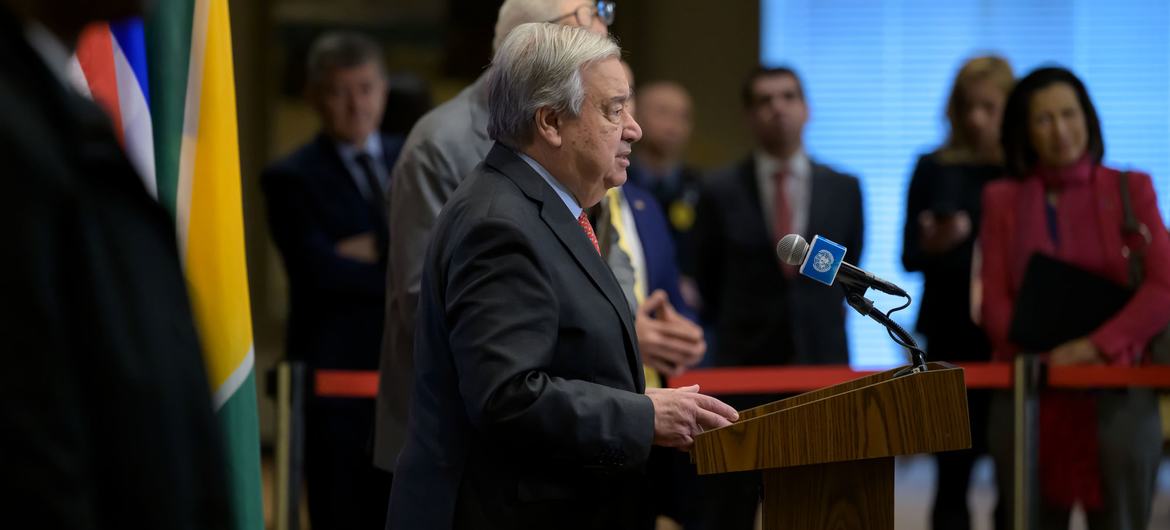
- 30 Jun 2025
In News:
In a significant move towards institutional transformation, UN Secretary-General António Guterres has launched the UN80 Initiative, aimed at overhauling the United Nations system in the run-up to the 80th anniversary of the UN Charter.
What is the UN80 Initiative?
The UN80 Initiative is a system-wide reform agenda designed to align the UN's structures, mandates, and operations with contemporary global challenges, including peacebuilding, sustainable development, and human rights.
Objectives:
- Modernize the UN architecture to improve responsiveness.
- Enhance accountability and reduce inefficiencies.
- Ensure effective delivery of core mandates in peace, development, and human rights.
Key Features of the UN80 Initiative:
1. Three Core Workstreams:
- Efficiency & Cost Reduction: Streamlining operations, eliminating overlaps, cutting administrative costs, and automating services.
- Mandate Implementation Review: Assessing the execution (not content) of over 3,600 UN mandates for effectiveness.
- Structural Reforms: Reorganizing departments and programs, especially in high-cost duty stations.
2. Formation of Thematic UN80 Clusters:
Seven thematic clusters focus on:
- Peace & Security
- Development (UN Secretariat and UN System)
- Humanitarian Affairs
- Human Rights
- Training & Research
- Specialized Agencies
3. Relocation and Rationalization:
- Proposes shifting operations from expensive cities like New York and Geneva.
- Seeks to abolish underperforming and redundant functions.
4. Budget Integration Timeline:
- Initial reforms to be reflected in the 2026 Revised Budget.
- Major structural reforms to be integrated into the 2027 Programme Budget.
Significance of the UN80 Initiative:
- Revitalizes Multilateralism: Supports the broader goals of the Pact for the Future and ensures the UN remains relevant.
- Boosts Operational Efficiency: Reduces waste, overlap, and underutilization of resources.
- Focuses on Results: Transitions from output-heavy reporting to impact-driven outcomes.
The Emergency in India (1975–1977)
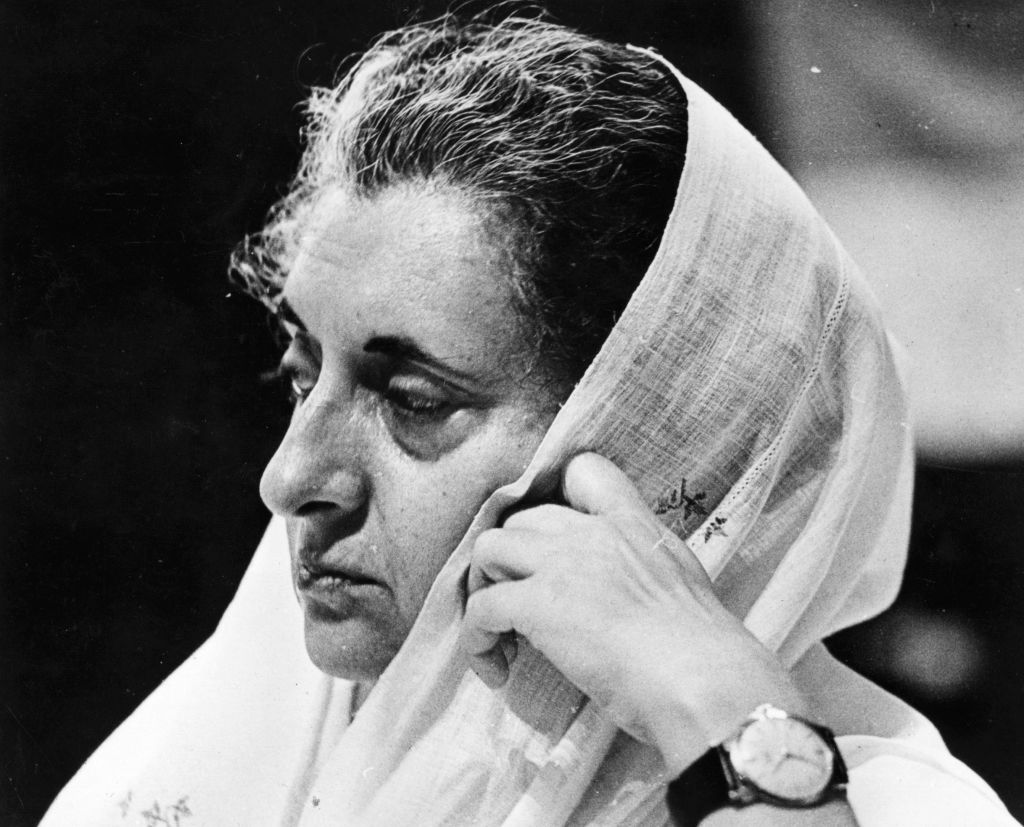
- 28 Jun 2025
In News:
The declaration of Emergency in India from 25 June 1975 to 21 March 1977 marks one of the most debated and transformative chapters in the country’s post-independence history. Proclaimed under Article 352 of the Constitution citing “internal disturbance”, this period had far-reaching legal, political, and social consequences. It served as a stress test for India’s democratic institutions and led to significant constitutional reforms.
Background:
- The early 1970s were marked by growing political discontent. Nationwide protests, especially in Bihar and Gujarat, were spearheaded by Jayaprakash Narayan against issues such as rising unemployment, inflation, corruption, and misuse of political power.
- The immediate provocation came from the Allahabad High Court’s judgment on 12 June 1975, which found Prime Minister Indira Gandhi guilty of electoral malpractice in her 1971 Lok Sabha campaign. The Court disqualified her from contesting elections for six years under the Representation of the People Act, 1951.
- Though the Supreme Court granted a conditional stay, political pressure intensified, with mass movements demanding her resignation.
Proclamation of Emergency
On 25 June 1975, President Fakhruddin Ali Ahmed, on the advice of the Prime Minister, declared a national Emergency under Article 352, citing internal disturbance. This was the third Emergency in India — the first two being during external wars (1962 with China and 1971 with Pakistan). However, this was the first peacetime Emergency.
Constitutional Basis
At that time, Article 352 allowed Emergency on three grounds:
- War
- External Aggression
- Internal Disturbance (later amended to “armed rebellion” by the 44th Amendment, 1978)
Suspension of Fundamental Rights
Two days later, on 27 June 1975, the government invoked:
- Article 358: Automatically suspended the freedoms under Article 19 (freedom of speech, assembly, movement, etc.)
- Article 359: Allowed suspension of Articles 14, 21, and 22, stripping protections related to equality before law, life and personal liberty, and protection against preventive detention.
Citizens lost access to courts for constitutional remedies. Prominent opposition leaders, including Jayaprakash Narayan, Morarji Desai, Atal Bihari Vajpayee, and L.K. Advani, were arrested under the Maintenance of Internal Security Act (MISA). According to the Shah Commission, around 35,000 individuals were detained without trial.
Censorship and Media Suppression
From 26 June 1975, press censorship was imposed. Newspapers were mandated to get clearance from government-appointed censors before publication. International news coverage was also tightly controlled, with telex messages of foreign correspondents placed under surveillance.
Key developments:
- On 20 July 1975, the Board of Film Censors was restructured to impose stricter control over cinema.
- On 1 February 1976, the four national news agencies — PTI, UNI, Samachar Bharati, and Hindustan Samachar — were merged into ‘Samachar’.
- The Press Council of India was dissolved.
Constitutional Amendments and Legislative Overreach
Several constitutional amendments were enacted to consolidate power:
- 38th Amendment (1975): Made the President’s Emergency declaration non-justiciable.
- 39th Amendment (1975): Excluded Prime Minister’s election from judicial review.
- 42nd Amendment (1976) (termed “Mini-Constitution”):
- Gave primacy to Directive Principles over Fundamental Rights
- Extended Lok Sabha and State Assembly terms from 5 to 6 years
- Limited judicial review, centralised authority
- Empowered Parliament to amend the Constitution without court scrutiny
Sterilisation Campaign
One of the most controversial aspects was the forced sterilisationprogramme led by Sanjay Gandhi. While aimed at population control, it resulted in widespread coercion and human rights violations.
- 1975–76: 26.42 lakh sterilisation procedures
- 1976–77: 81.32 lakh
- Total over two years: 1.07 crore
- Many were linked to access to ration cards, housing, loans, and employment
End of Emergency and Democratic Reversal
The Emergency was revoked on 21 March 1977. In the subsequent general elections (March 1977), the Congress party was defeated, and the Janata Party under Morarji Desai assumed power. This marked the first non-Congress government at the Centre
Post-Emergency Reforms: The Shah Commission and 44th Amendment
The Shah Commission (1977–79)
Set up in May 1977, chaired by Justice J.C. Shah, it investigated:
- Illegal arrests and detentions
- Press censorship
- Forced sterilisation
- Bureaucratic misuse and political excesses
44th Constitutional Amendment (1978)
To prevent future misuse:
- Replaced “internal disturbance” with “armed rebellion” as a ground for Emergency
- Restored judicial review of Emergency proclamations
- Safeguarded Fundamental Rights, particularly Articles 20 and 21
- Ensured Cabinet approval was mandatory before Emergency declaration
India’s Data Imperative – The Pivot Towards Quality
- 28 Jun 2025
In News:
In a significant policy intervention, NITI Aayog has released the report titled “India’s Data Imperative: The Pivot Towards Quality”, calling for urgent reforms to enhance the integrity, interoperability, and usability of India’s public data systems. The report underscores the critical role of data in governance, welfare delivery, and digital innovation.
Understanding India’s Public Data Ecosystem
India's data ecosystem constitutes a vast digital public infrastructure that powers governance and service delivery across sectors. It integrates identity, finance, health, and welfare through data-centric platforms:
- Aadhaar: Over 27 billion authentications in FY 2024–25; foundational for identity-linked services.
- UPI: Handles transactions worth ?23.9 trillion monthly — the world’s largest real-time digital payment system.
- Ayushman Bharat Digital Mission: 369 million health IDs issued; enhancing interoperability in healthcare.
- Direct Benefit Transfer (DBT): ?5.47 lakh crore transferred in FY 2024–25 across 330+ schemes.
- Aadhaar e-KYC: 1.8 billion transactions, significantly reducing onboarding costs and time.
- Digital Inclusion: Over 1.2 billion mobile subscribers and 800 million internet users reflect the scale of India’s digital penetration.
Why India Needs a Quality-Driven Data Ecosystem
- Curb Fiscal Leakage:Inaccurate or duplicate data inflates welfare expenditure by 4–7% annually.
- Enable Evidence-Based Governance:Data-driven insights power AI-led service delivery, improve beneficiary targeting, and strengthen accountability.
- Foster Public Trust:The legitimacy of digital governance depends on accurate, timely, and reliable data systems.
- Strengthen India’s AI & Innovation Ecosystem:Clean, validated data is essential for building AI applications in healthcare, agriculture, and citizen services.
- Enhance Cross-Ministerial Coordination:Interoperable data frameworks help break silos and improve policy coherence across ministries.
Key Challenges in India’s Data Governance Landscape
Challenge Description
Fragmentation Departmental silos with non-standardised data formats hinder seamless integration.
Lack of Ownership Absence of clear data custodians leads to accountability gaps.
Legacy Systems Outdated IT systems impede real-time updates and data sharing.
Incentive Mismatch Existing frameworks reward speed over accuracy, eroding data quality.
Poor Quality Culture A prevailing acceptance of “80% accuracy is good enough” weakens long-term integrity.
NITI Aayog’s Recommendations for Reform
- Institutionalise Data Ownership:Designate dedicated data custodians at national, state, and district levels to oversee quality.
- Incentivise Accuracy:Incorporate data quality metrics into performance appraisals and financial allocations.
- Promote Interoperability:Adopt standards like IndEA (India Enterprise Architecture) and NDGFP (National Data Governance Framework Policy) to ensure consistency.
- Use Practical Tools:Implement tools like the Data Quality Scorecard and Maturity Framework for ongoing assessment.
- Build Capacity:Train field-level personnel and managers to prioritise data fidelity as a core administrative function.
Significance of the Report
This report arrives at a critical juncture when India is rapidly expanding its digital public infrastructure but faces risks from data inaccuracy, siloed systems, and erosion of trust. By shifting focus from quantity to quality, NITI Aayog envisions a resilient, inclusive, and innovation-friendly data regime—essential for achieving Digital India goals and Sustainable Development Objectives.
Total Revolution
- 28 Jun 2025
In News:
India commemorates the 51st anniversary of Jayaprakash Narayan’s (JP) historic call for “Sampoorna Kranti” or Total Revolution, first proclaimed on June 5, 1974, at Gandhi Maidan, Patna. The movement remains a landmark in India's democratic evolution, reflecting enduring concerns over governance, democracy, and civic empowerment.
What is Total Revolution?
- Concept: A holistic, non-violent movement rooted in Gandhian ideals, aimed at comprehensive transformation—political, economic, social, cultural, and spiritual.
- Vision: Building a just and equitable society through decentralised democracy, moral rejuvenation, and participatory governance.
- Leadership: Spearheaded by Jayaprakash Narayan (JP), advocating a “party-less democracy” blending Gandhian ethics, Sarvodaya ideals, and Marxist critique.
Underlying Causes of the Movement
- Electoral Legitimacy Crisis:The 1975 Allahabad High Court judgment disqualified Prime Minister Indira Gandhi for electoral malpractices, eroding her authority and galvanising mass opposition.
- Youth Unrest:Movements like Navnirman Andolan (Gujarat) and Bihar student protests reflected mounting youth dissatisfaction over unemployment and poor governance.
- Economic Distress:The early 1970s saw inflation exceeding 20%, acute unemployment, and food shortages, leading to widespread discontent.
- Democratic Backsliding:Use of draconian laws like MISA, increased centralisation, and suppression of dissent led to civil society mobilisation.
- Charismatic Mobilisation:JP’s appeal for non-violent civic awakening and his ability to unify diverse ideological streams helped launch a broad-based national movement.
Core Components of the Total Revolution
Domain Focus
Political Advocated bottom-up governance, decentralisation, and accountability
to counter bureaucratic authoritarianism.
Economic Promoted land reforms and people-centric development to address inequality.
Social Called for eradication of casteism, gender bias, and dowry to foster egalitarianism.
Educational Suggested reforms emphasisingethics, rural upliftment, and vocational training.
Cultural-Spiritual Encouraged self-discipline, national unity, and moral regeneration.
Impact of Total Revolution
On Society and Citizenry
- Youth Mobilisation: Inspired a generation of political leaders—Lalu Prasad Yadav, Nitish Kumar, Sushil Modi—who reshaped regional politics.
- Civic Engagement: Fostered a deeper culture of public accountability and democratic participation.
- Non-Violent Resistance: Reinforced the efficacy of peaceful protest, a legacy echoed in later movements like Anna Hazare’s anti-corruption crusade.
On Governance and Policy
- Collapse of Congress Monopoly: Led to the formation of the Janata Party, marking a historic electoral defeat for the Congress in 1977.
- Constitutional Safeguards: Triggered the 44th Constitutional Amendment, curbing emergency powers and restoring judicial oversight.
- Democratic Deepening: Inspired Panchayati Raj reforms through the 73rd and 74th Amendments, enhancing grassroots democracy.
Significance and Contemporary Relevance
- Democratic Dissent: Reinvigorated the right to protest as a fundamental democratic tool.
- Leadership Incubation: Nurtured mass-based political leadership, altering India’s political landscape.
- Institutional Vigilance: Exposed systemic vulnerabilities, prompting long-term institutional reforms.
- Civic Awakening: Broadened the role of civil society in governance beyond electoral cycles.
- Modern-Day Lessons: Offers vital insights for addressing centralisation of power, youth alienation, and democratic backsliding in contemporary India.
Training of Trainers (ToT)Programme
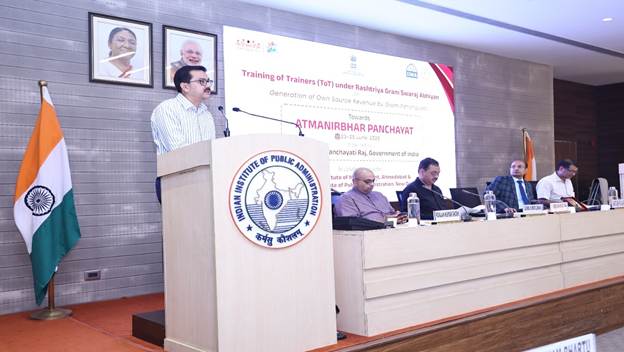
- 27 Jun 2025
In News:
In a significant move to strengthen grassroots governance and fiscal autonomy, the Ministry of Panchayati Raj (MoPR) has launched a Training of Trainers (ToT)programme in collaboration with the Indian Institute of Management (IIM) Ahmedabad and the Indian Institute of Public Administration (IIPA). The initiative aims to enhance the capacity of Panchayats to generate Own Source Revenue (OSR) under the Rashtriya Gram Swaraj Abhiyan (RGSA).
Key Objectives:
- Enhance financial self-reliance of Panchayati Raj Institutions (PRIs).
- Build a cadre of Master Trainers equipped to train Panchayat-level functionaries.
- Shift local governance from a compliance-based model to proactive planning, innovation, and community engagement.
- Promote a culture of fiscal accountability, transparency, and efficient public service delivery at the grassroots level.
Core Focus Areas of Training
- Fundamentals of Own Source Revenue (OSR)
- Revenue enhancement strategiestailored to rural contexts
- Behavioural insights in tax collectionand compliance
- Revenue utilization for development and service delivery
- Village-level financial planningand Gram Panchayat Development Plans (GPDPs)
- Innovative financing mechanisms
- Project management and accountability tools
The training emphasized field orientation, peer learning, and evidence-based practices to ensure real-world applicability and long-term impact.
Institutional Reforms and Digital Integration
As part of the broader reform agenda:
- Model OSR Rules Framework is under development based on state-level legislative reviews.
- A Digital Tax Collection Portal is being created to facilitate:
- Simplified and accountable revenue collection,
- Digital integration with Panchayat-level financial systems.
Case Studies & Best Practices
The training showcased successful Panchayat-level revenue generation models from:Odisha, Gujarat, Goa, Uttar Pradesh, Maharashtra, and the Andaman & Nicobar Islands, highlighting scalable models of local innovation.
Rashtriya Gram Swaraj Abhiyan (RGSA): Background
A Centrally Sponsored Scheme (CSS) launched in 2018 and revamped for 2022–2026, aimed at developing and strengthening the Panchayati Raj System across rural India.
Key Objectives:
- Build governance capacity of PRIs to achieve Sustainable Development Goals (SDGs).
- Empower Panchayat representatives for effective leadership and participatory governance.
- Enhance OSR generation and financial planning at the Panchayat level.
- Promote inclusive development and convergence of schemes.
- Strengthen Gram Sabhas as platforms for citizen engagement.
Salient Features:
- Emphasis on capacity-building and leadership training.
- Promotes decentralisation and compliance with the PESA Act, 1996.
- Encourages use of technology-driven solutions for governance.
- Recognises and incentiviseshigh-performing Panchayats.
- Facilitates collaboration with international and national institutions.
NAVYA Initiative
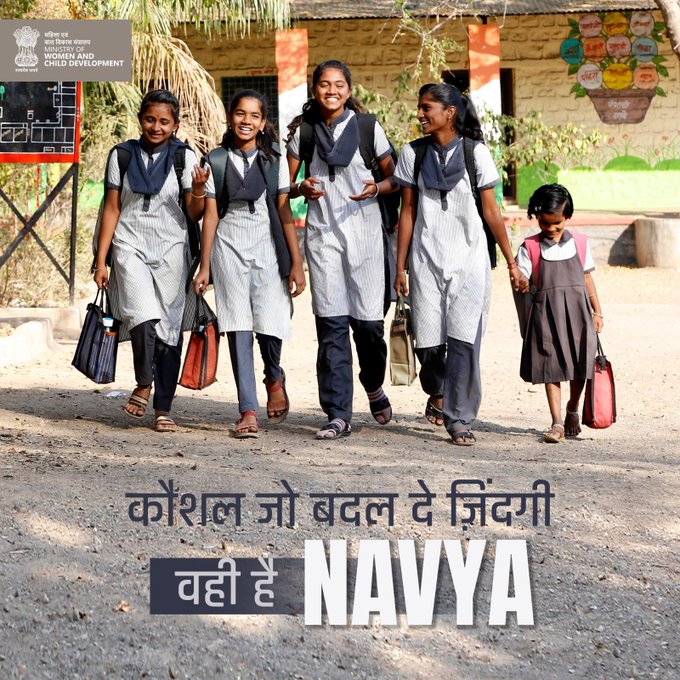
- 26 Jun 2025
In News:
In line with the vision of Viksit Bharat@2047 and the government’s focus on women-led development, the Government of India has launched NAVYA—a pilot initiative aimed at vocationally skilling adolescent girls to empower them with future-ready skills and opportunities.
The programme was officially launched in Sonbhadra, Uttar Pradesh, by the Ministry of Women and Child Development (MWCD) in collaboration with the Ministry of Skill Development and Entrepreneurship (MSDE).
About Nurturing Aspirations through Vocational Training for Young Adolescent Girls (NAVYA):
- Objective:To provide vocational training to adolescent girls aged 16–18 years (with a minimum qualification of Class 10) in non-traditional job roles.
- Target Areas:Implemented as a pilot project in 27 districts across 19 States, including:
- Aspirational districts
- Districts in the North-Eastern States
This reflects the government's commitment to inclusive development and reaching underserved and vulnerable populations.
- Institutional Collaboration:
- Both ministries will formalize convergence to streamline and institutionalize skilling efforts for adolescent girls.
- NAVYA draws upon existing frameworks like the Pradhan Mantri Kaushal Vikas Yojana (PMKVY) and other flagship skill development schemes.
Significance of NAVYA:
Aspect Importance
Empowerment - Enhances skills, confidence, and self-reliance among young girls
Gender Inclusion - Supports women-led development and economic participation
Employment Readiness - Equips girls with job-oriented skills in non-traditional sectors
Regional Equity - Targets backward and underserved regions to reduce disparities
Demographic Dividend - Harnesses the potential of India’s adolescent population in national development
“NAVYA represents a transformative step in ensuring that every adolescent girl becomes a catalyst for change in India’s journey towards an inclusive, skilled, and developed future.”
Estimates Committee
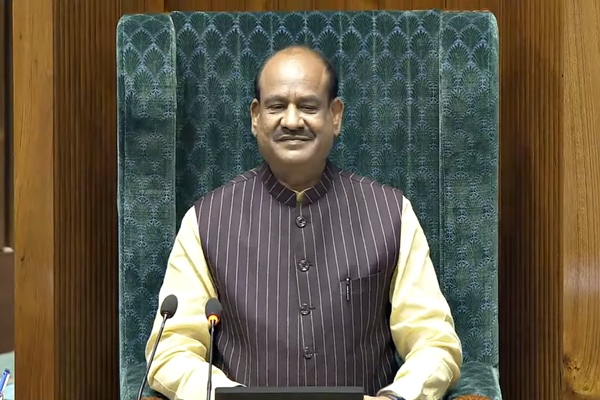
- 24 Jun 2025
In News:
The Lok Sabha Speaker inaugurated the National Conference of Estimates Committees in Mumbai to mark 75 years of the Parliamentary Estimates Committee.
About the Estimates Committee:
- Type: Parliamentary Financial Standing Committee (Lok Sabha).
- Established in: 1950, under the Rules of Procedure of Lok Sabha, after the adoption of the Constitution.
- Purpose: To examine how public funds are allocated and utilized, and recommend improvements in economy, efficiency, and accountability.
Composition:
- Total Members: 30 Lok Sabha MPs.
- Exclusion: Ministers are not eligible to be members.
- Chairperson: Appointed by the Speaker of Lok Sabha.
- Term: One year, renewable annually.
Selection Process:
- Members are elected annually by the Lok Sabha through proportional representation using the single transferable vote system.
Key Functions:
- Examine budget estimates of various ministries and departments.
- Suggest reforms for better economy and efficiency in public expenditure.
- Recommend alternative policies for improved governance and financial management.
- Evaluate effectiveness of spending aligned with policy objectives.
- Suggest improvements in the presentation of budget estimates to Parliament.
Exclusions: Does not examine Public Sector Undertakings — these are dealt with by the Committee on Public Undertakings.
Working Mechanism:
- Selects specific departments or statutory bodies for scrutiny.
- Seeks inputs from government officials and external experts.
- Undertakes study visits and on-ground assessments (with prior approval).
- Holds formal evidence sessions in Parliament.
- Submits findings and recommendations through reports to the Lok Sabha.
- The Government must submit Action Taken Reports (ATR) within six months.
Achievements (as of 2025):
- Total Reports Presented: 1,184
- 656 Original Reports
- 528 Action Taken Reports
- Covered nearly all major ministries and departments.
- Contributed to strengthening Parliamentary financial oversight and ensuring fiscal discipline.
Operation Midnight Hammer
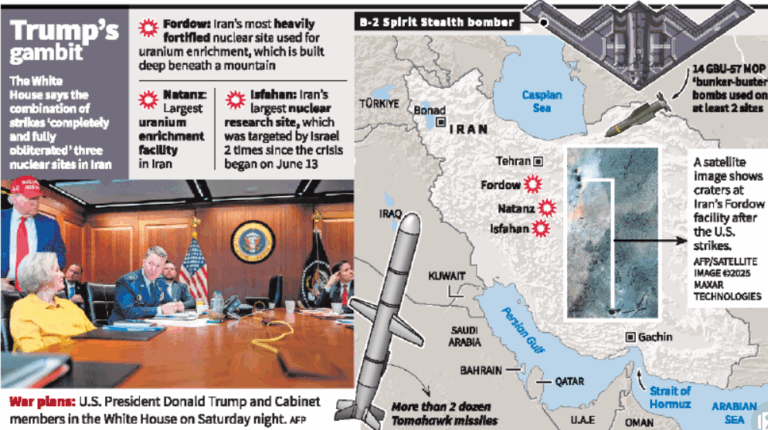
- 24 Jun 2025
In News:
The United States launched a classified military operation named Operation Midnight Hammer, targeting Iran’s major nuclear sites at Fordow, Natanz, and Isfahan, claiming significant damage to its nuclear infrastructure.
About Operation Midnight Hammer:
- A covert US airstrike intended to degrade Iran’s nuclear weapons program.
- Launched by: US Department of Defense.
- Objective: Destruction of fortified nuclear facilities and demonstration of US strategic air power.
Key Assets Deployed:
- B-2 Spirit Stealth Bombers equipped with GBU-57A/B Massive Ordnance Penetrators (MOPs) – “bunker-buster” bombs designed to penetrate over 200 feet of reinforced concrete.
- Tomahawk Land Attack Cruise Missiles launched from US submarines.
- Support aircraft and decoys for air defence suppression.
B-2 Spirit Stealth Bomber:
- Type: Long-range strategic stealth bomber of the US Air Force.
- Developed by: Northrop Grumman (1980s).
- Cost: Approx. $2.1 billion per unit – one of the most expensive aircraft in the world.
- Range: Over 6,000 nautical miles without refuelling.
- Crew: Operated by two pilots.
Weapons and Capabilities:
- Payload Capacity: Over 40,000 pounds.
- Armament Options:
- 2 × GBU-57A/B MOPs
- 16 × B83 nuclear bombs (part of US nuclear triad)
- Precision-guided weapons: JDAM, JSOW, JASSM-ER.
- Stealth Features: Radar cross-section as small as a bird – allows evasion of sophisticated air defences.
Strategic Significance:
- Enhances the US’s global precision strike capabilities.
- Reinforces the deterrence role of the B-2 in both conventional and nuclear domains.
- Capable of targeting heavily fortified underground facilities.
- Proven operational effectiveness in Afghanistan, Libya, and now Iran.
Green Hydrogen Production
- 24 Jun 2025
In News:
In a significant scientific milestone, Indian researchers have developed a next-generation, scalable solar-driven device for producing green hydrogen—offering a major boost to clean energy innovation and India’s energy transition goals.
Key Highlights:
- Developed By: Centre for Nano and Soft Matter Sciences (CeNS), Bengaluru — an autonomous institute under the Department of Science and Technology (DST).
- Publication: The findings were published in the Journal of Materials Chemistry A (Royal Society of Chemistry).
What Is Green Hydrogen?
Green hydrogen is produced by splitting water molecules using renewable energy sources, especially solar and wind, without any greenhouse gas emissions. It is a clean energy carrier with the potential to decarbonize heavy industries, power vehicles, and store energy.
The Innovation: Solar-Driven Water Splitting Device
- The device uses only solar energy to split water and produce hydrogen.
- It employs a silicon-based photoanode with an n-i-p heterojunction structure:
- n-type TiO?, intrinsic (undoped) Si, and p-type NiO layers.
- This structure enhances charge separation and transport efficiency.
- Fabrication via magnetron sputtering, a scalable, industry-compatible process.
Key Performance Metrics
- Surface photovoltage: 600 millivolts (mV)
- Low onset potential: ~0.11 VRHE
- Stability: Operated continuously for over 10 hours in alkaline medium with only ~4% performance degradation.
- Successfully scaled to a 25 cm² photoanode, showing strong solar-to-hydrogen conversion.
Advantages of the Device
Feature Benefit
Pure solar operation No external power or fossil fuel input
High energy efficiency Better light absorption, reduced recombination loss
Material use Low-cost, earth-abundant materials
Durability Stable under alkaline conditions
Scalability Demonstrated potential for industrial-scale production
Strategic Significance
- Accelerates India’s National Green Hydrogen Mission and hydrogen-based economy.
- Supports India’s net-zero emission commitments and climate action.
- Offers a cost-effective, clean energy alternative to fossil fuels in:
- Hard-to-abate sectors like steel and cement
- Clean transport solutions
- Renewable energy storage systems
Samson Option
- 23 Jun 2025
In News:
The Samson Option, Israel’s controversial and undeclared nuclear deterrence doctrine, has returned to global focus amid escalating military strikes on Iran’s nuclear infrastructure under Operation Rising Lion (June 2025). The rising risk of a multi-front conflict involving Iran, Hezbollah, and Houthi actors has revived global concerns over nuclear escalation in the volatile Middle East.
What is the Samson Option?
- Definition: Israel’s nuclear annihilation doctrine of last resort, based on the principle of massive retaliation in case of an existential threat to the state.
- Doctrine Type: Deterrence-by-retaliation, not first use.
- Strategic Intent: Not to deter routine threats, but to ensure mutual destruction if Israel faces annihilation.
- Named After: Samson, a biblical warrior who destroyed himself and his enemies in a final act of vengeance (Judges 13–16).
Key Features
Feature Details
Ambiguity (Amimut) Israel neither confirms nor denies its nuclear arsenal.
Nuclear Capability Estimated 80–400 nuclear warheads, with delivery via land (Jericho missiles), air, and sea.
Indigenous Development Secret nuclear program began in the 1950s under Ben-Gurion with aid from France & Norway.
Delivery Platforms Multi-platform: land-based missiles (Jericho series), aircraft, and submarines.
Psychological Warfare Operates as a psychological deterrent, not an openly declared policy.
Policy Origin Popularized by Seymour Hersh’s 1991 book, built upon disclosures by whistleblower Mordechai Vanunu (1986).
Historical Evolution
- 1950s–60s: Nuclear ambitions began under PM David Ben-Gurion.
- 1967: Believed to have assembled first nuclear weapon by Six-Day War.
- Public Position: “We will not be the first to introduce nuclear weapons in the Middle East” – Shimon Peres to JFK.
- Doctrinal Continuity: Israel remains outside the NPT (Non-Proliferation Treaty) and follows the policy of opacity to this day.
Why It’s in Focus Now: Operation Rising Lion & 2025 Escalations
- Operation Rising Lion (June 2025): Israel’s largest campaign against Iran’s nuclear sites since the 1981 Osirak raid.
- Iran’s Response: Ballistic missile and drone counterstrikes tested Israel’s air defences (Iron Dome, Arrow-3).
- Multi-Front Threats: Escalations from Hezbollah in Lebanon, Houthi threats in the Red Sea, and tension in Gaza heighten risks of a regional conflagration.
- Red Lines: Any mass-casualty attack involving WMDs (chemical/radiological) may activate Israel’s last-resort nuclear doctrine.
Implications for the Region and the World
- Security and Strategic Balance
- Israel’s nuclear ambiguity complicates strategic planning for adversaries.
- Shapes arms acquisition strategies of regional players like Iran, Saudi Arabia, and UAE.
- Geoeconomic and Business Fallout
- Oil Market Volatility: Brent crude hit $102/barrel after Israeli strike on Natanz.
- Defence Sector Boom: Surge in defence procurement by Gulf States; U.S. firms like Raytheon and Lockheed Martin benefit.
- Investor Uncertainty: Rising nuclear rhetoric rattles financial markets and international investors.
- Nuclear Non-Proliferation Challenges
- Israel’s position outside the NPT undermines the credibility of global arms control.
- Inspires double standards debate and pressures nations like Iran to pursue deterrent paths.
- Cyber Deterrence and Intelligence Warfare
- Past cyber ops like Stuxnet (U.S.–Israel malware attack on Iran’s nuclear centrifuges) re-emerging.
- Cyber warfare now considered part of the extended nuclear deterrent architecture.
11th International Day of Yoga (IDY) – 2025
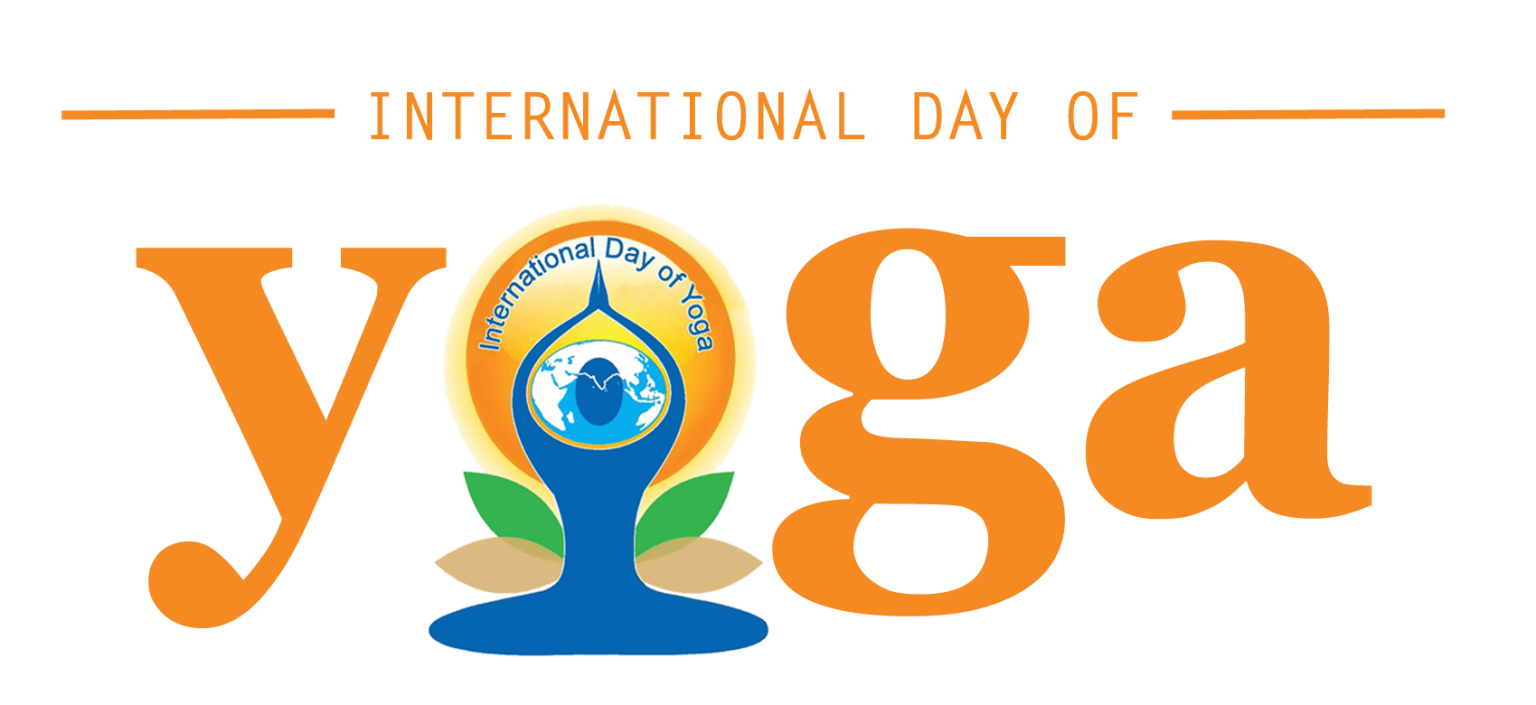
- 22 Jun 2025
In News:
The 11th International Day of Yoga (IDY) will be observed on June 21, 2025, under the theme “Yoga for One Earth, One Health”. The theme emphasizes the connection between individual well-being and planetary health, aligned with India’s G20 vision of “One Earth, One Family, One Future.”
About the International Day of Yoga
- What it is: An annual global observance promoting yoga as a holistic health practice for physical, mental, and emotional well-being in harmony with nature.
- Adoption: Declared by the United Nations General Assembly (UNGA) through Resolution 69/131 on December 11, 2014, following India's proposal.
- First Observed: June 21, 2015
- Nodal Ministry: Ministry of AYUSH, Government of India
Theme for 2025: “Yoga for One Earth, One Health”
- Focuses on the interdependence between human health and environmental sustainability.
- Reinforces yoga’s role in achieving sustainable lifestyles and climate consciousness.
Key Objectives
- Promote mind-body balance, emotional stability, and overall well-being through yoga.
- Raise global awareness on yoga’s health and ecological benefits.
- Encourage adoption of yoga as part of daily life for sustainable living.
- Strengthen India’s soft power and global leadership in wellness traditions.
Highlights and Participation
- Global Reach: Adopted by 175 UN Member States. Global participation has grown from 9 crore in 2018 to 24.53 crore in 2024.
- Mass Events: Celebrated across countries with support from state governments, Indian embassies, UN bodies, and civil society.
- Inclusive Message: Yoga Day’s logo and themes emphasize unity, well-being, and coexistence with nature.
Significance
- Public Health Tool: Promotes a low-cost, accessible, preventive healthcare practice.
- Sustainability Alignment: Advocates for climate-sensitive living and ecological harmony.
- Cultural Diplomacy: Enhances India’s global stature as the birthplace of yoga and a leader in wellness diplomacy.
- Soft Power Projection: Reflects India’s cultural values and promotes its influence through global well-being initiatives.
QS World University Rankings 2026
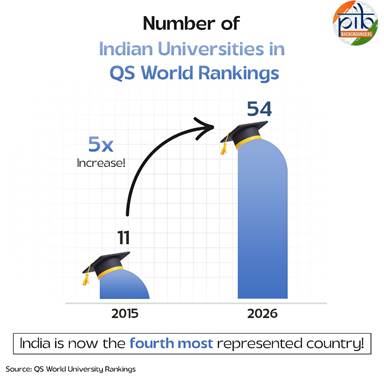
- 22 Jun 2025
In News:
India has recorded its highest representation to date in the QS World University Rankings 2026, with 54 institutions featured—up from 11 in 2015. This marks a five-fold increase in a decade, making India the fourth most represented country, after the US, UK, and China.
Key Highlights
- Total Indian Institutions Ranked (2026): 54
- New Entrants from India: 8
- Top-performing Indian Institution: IIT Delhi (Rank 123)
- Fastest Rising Indian Institution: IIT Madras, up 47 places (from 227 in 2025 to 180 in 2026)
- Indian Institutes of Technology (IITs) Featured: 12
- Debut Institutions in 2026:
- IIT Gandhinagar
- Lovely Professional University (LPU)
- Kalinga Institute of Industrial Technology (KIIT)
- Ashoka University
- Galgotias University
- Shiv Nadar University
- CHRIST (Deemed to be University), Bengaluru
- Manav Rachna International Institute of Research and Studies (MRIIRS)
Significant Trends and Insights
- Global Standing:
- India now ranks 4th globally in terms of number of institutions in the QS Rankings.
- Only the US (192), UK (90), and China (72) rank higher.
- Improvements and Recognition:
- 48% of India’s ranked institutions have improved their positions over last year.
- 6 institutions are in the global top 250.
- 5 Indian universities are among the top 100 globally for Employer Reputation, showing high industry trust.
- 8 institutions rank in the top 100 for Citations per Faculty, with an average score of 43.7—higher than the UK, US, and Germany.
- Diverse Representation:
- Includes central universities, deemed-to-be universities, technical institutions, and private universities, reflecting a balanced and diversified higher education landscape.
QS Ranking Methodology: Key Indicators
Performance Lens Weightage Indicators Weightage
Research & Discovery 50% Academic Reputation 30%
Citations per Faculty 20%
Employability & Outcomes 20% Employer Reputation 15%
Employment Outcomes 5%
Global Engagement 15% International Faculty Ratio 5%
International Research Network 5%
International Student Ratio 5%
Learning Experience 10% Faculty-Student Ratio 10%
Sustainability 5% Sustainability 5%
- New Indicator in 2026: International Student Diversity (tracks number and diversity of international students; non-weighted this cycle)
Significance for India
- The consistent rise highlights the impact of reforms under the National Education Policy (NEP) 2020, with greater emphasis on research, global collaboration, academic excellence, and employer integration.
- India’s progress makes it the fastest-rising G20 nation in QS rankings.
- Reflects increasing global trust and recognition of India’s higher education system.
Predatory Pricing and Competition Law Reform

- 21 Jun 2025
In News:
- The Competition Commission of India (CCI) has recently proposed the Determination of Cost of Production (DCOP) Regulations, 2025 to replace the older 2009 norms. A major reform introduced is the use of Average Total Cost (ATC) as a key metric to determine pricing in predatory pricing cases, while excluding ‘market value’ as a cost measure in such assessments.
- This development is significant in the context of India's broader competition law landscape, where concerns around market dominance and fair pricing are central to protecting consumer interest and ensuring a level playing field.
Understanding Predatory Pricing
- Predatory pricing refers to the practice of setting prices below cost to eliminate competitors from the market. Although consumers may benefit from low prices in the short term, the long-term consequence is often the emergence of monopolies, leading to higher prices and fewer choices. Due to its anti-competitive nature, this pricing strategy is banned in most jurisdictions globally.
- In India, predatory pricing is classified under ‘abuse of dominance’ as per the Competition Act, 2002, specifically under the broader category of unfair pricing or exclusionary conduct.
Legal Criteria for Establishing Predatory Pricing in India
For any allegation of predatory pricing to hold, three conditions must be satisfied:
- Dominance in the Market: The firm accused must hold a dominant position in the relevant market.
- Pricing Below Cost: The firm must have engaged in below-cost pricing, though defining “cost” has remained contentious. This raises the question—should cost mean fixed, variable, or total?
- Fixed costs are those independent of output (e.g., rent, IT systems).
- Variable costs change with production (e.g., raw materials, logistics).
- Total cost is the sum of fixed and variable costs.
- Intent to Eliminate Competition: There must be clear evidence that the pricing strategy was intended to exclude competitors from the market.
While dominance is usually straightforward to assess, determining what constitutes “cost” and proving anti-competitive intent remain legally complex.
Regulatory Evolution: From AVC to ATC
- Under existing regulations, the CCI had discretion to choose the cost metric on a case-by-case basis. The norm was to justify the use of any metric other than Average Variable Cost (AVC).
- A notable application was in the MCX vs. NSE case, where the Commission adopted the Long Run Average Incremental Cost (LRAIC) due to the network externalities inherent in stock exchange services, justifying inclusion of fixed costs.
- The new 2025 draft regulations now explicitly include Average Total Cost (ATC) as a valid benchmark for cost evaluation. ATC is widely accepted in industrial economics as a realistic representation of firm cost efficiency. By allowing ATC as a formal benchmark and excluding ‘market value’, the CCI aims to bring clarity and consistency in below-cost pricing investigations.
Why this Reform Matters
This proposed change holds importance for several reasons:
- It allows for a more holistic and realistic cost assessment, especially in industries where fixed costs form a significant part of the cost structure.
- It improves regulatory certainty and empowers the CCI to address anti-competitive practices in both legacy sectors (e.g., oil & gas) and emerging sectors (e.g., artificial intelligence and digital platforms).
- The reform is crucial at a time when the CCI’s budget has been declining year-on-year, limiting its enforcement capability. Simplified legal frameworks can enhance effectiveness without overburdening institutional resources.
Strengthening Inclusive Education for Children with Disabilities in India

- 21 Jun 2025
In News:
In a major step towards inclusive education, the Government of India signed a tripartite Memorandum of Understanding (MoU) in 2025 between the Department of Empowerment of Persons with Disabilities (DEPwD), National Institute of Open Schooling (NIOS), and National Council of Educational Research and Training (NCERT). The MoU aims to enhance curriculum reform, institutional coordination, and accessibility for children with disabilities across India’s education system.
What is Inclusive Education?
Inclusive education refers to a model where children with and without disabilities learn together in mainstream classrooms. It is supported by adapted curricula, accessible infrastructure, and individualised support mechanisms. The Rights of Persons with Disabilities (RPWD) Act, 2016 legally mandates inclusive education environments in India.
Why Inclusive Education Matters
Inclusive education is not merely a policy choice but a constitutional, social, and developmental imperative:
- Right to Education: Under Article 21A of the Constitution and the RTE Act, 2009, every child aged 6–14 has the right to free and compulsory education. This includes children with special needs (CWSN).
- Equity and Access: Reports by UNESCO highlight that 29 million children are out of school in South Asia, many of them with disabilities. Ensuring their inclusion addresses systemic exclusion.
- Social Transformation: Inclusive classrooms reduce stigma, promote empathy, and facilitate social acceptance of persons with disabilities.
- Human Capital Development: Educating CWSN enhances their ability to participate in the economy, contributing to innovation, productivity, and nation-building.
- Global Commitments: India has ratified the UN Convention on the Rights of Persons with Disabilities (CRPD, 2007) and is committed to SDG 4, which seeks inclusive and equitable quality education for all by 2030. The National Education Policy (NEP) 2020 also stresses disability inclusion at all education levels.
Key Data Points Highlighting the Need for Intervention
- According to the 2011 Census, around 7% of Indian children (0–19 years) have disabilities. However, data from UDISE+ 2019–20 reveals that less than 1% of children enrolled at the primary level are children with disabilities.
- In 2018–19, around 21 lakh CWSN were covered under Samagra Shiksha, supported by only 27,774 special/resource teachers across the country. This highlights the urgent need for both greater coverage and trained human resources.
Government Initiatives Promoting Inclusive Education
- The 2025 MoU between DEPwD, NIOS, and NCERT is aimed at reforming the curriculum to accommodate diverse learners. It also recognises special schools run under the Deendayal Disabled Rehabilitation Scheme (DDRS) as SAIEDs (Schools for Accessible and Inclusive Education for Disabled), expanding academic options for CWSN.
- The National Education Policy 2020 mandates the integration of children with disabilities in regular classrooms and promotes universal access and equity.
- Under Samagra Shiksha, the government provides financial support of ?3,500 per CWSN annually. Additional provisions include stipends for girls (up to Class XII), appointment of special educators, resource rooms, and home-based education for children with severe disabilities.
- NCERT’s Barkha Series, based on the Universal Design for Learning (UDL) framework, offers accessible reading materials in both print and digital formats, tailored to the diverse needs of learners.
- The RPWD Act 2016 mandates the creation of inclusive learning environments, with accessible buildings, assistive devices, and necessary support services.
Operation Sindhu
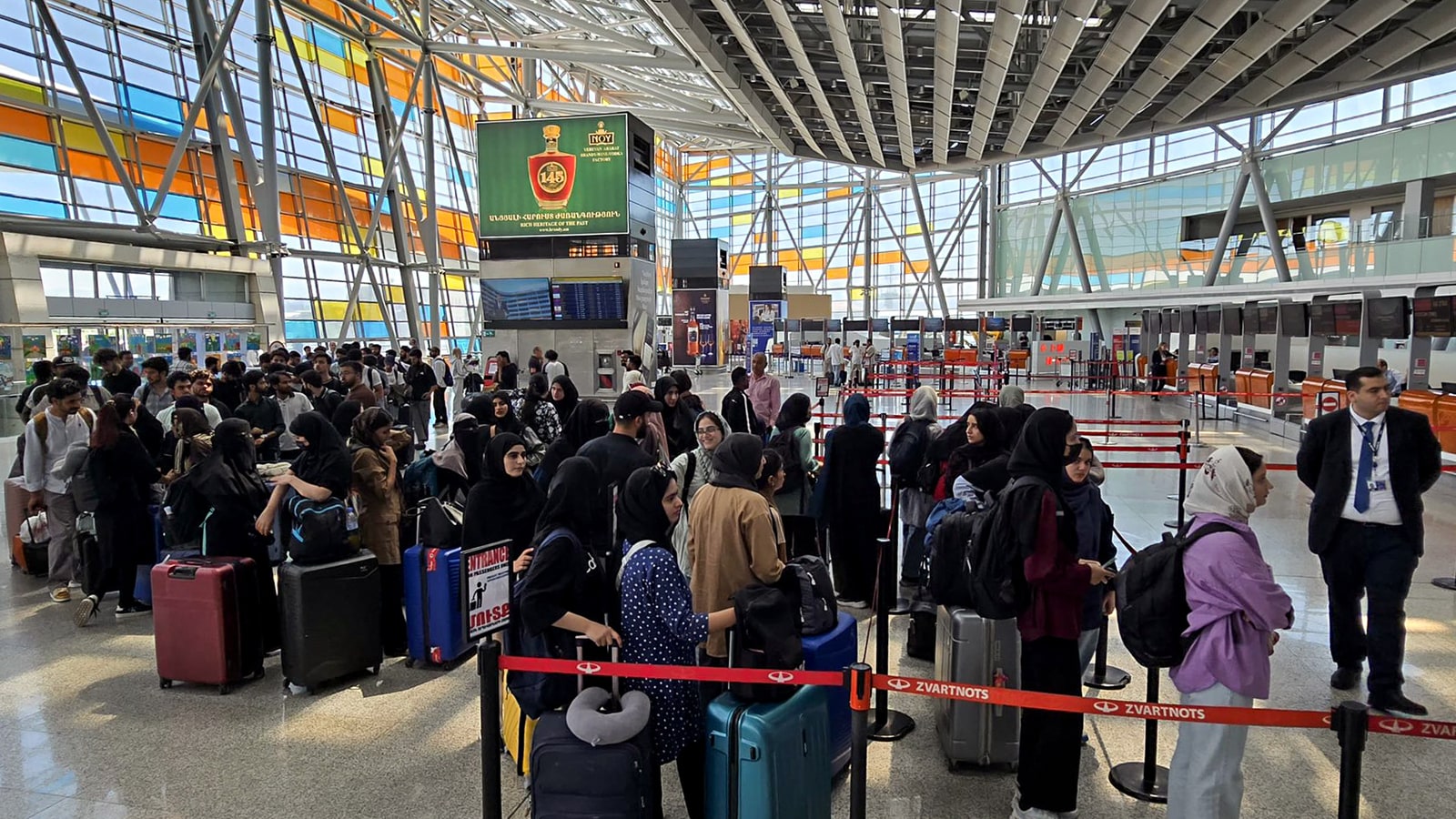
- 21 Jun 2025
In News:
As tensions escalate in West Asia due to the ongoing Iran-Israel conflict, the Government of India has launched Operation Sindhu to evacuate Indian nationals, particularly students, stranded in conflict-affected regions of Iran.
- The first flight under Operation Sindhu, carrying 110 Indian students, successfully landed in New Delhi, marking the beginning of the evacuation process.
What is Operation Sindhu?
Operation Sindhu is a government-led evacuation mission launched in 2025 to ensure the safe repatriation of Indian citizens from war-hit Iran.
- Launched by: Ministry of External Affairs (MEA), Government of India
- Assisted by: Indian Embassies in Iran and Armenia
Objectives:
- To safely evacuate Indian citizens, particularly students, from volatile zones in Iran.
- To coordinate safe land-based exit routes through Armenia, due to restricted or dangerous air routes over Iran.
Key Features of the Operation:
Feature Details
Evacuation Route Northern Iran → Yerevan (Armenia) → New Delhi
Monitoring Real-time updates and continuous monitoring by Indian missions
Coordination Close coordination with governments of Iran and Armenia
Control Room 24/7 MEA Control Room operational in New Delhi
India’s Major Air Evacuation Missions (Chronological Overview):
Mission Name Year Objective
Vande Bharat Mission 2020 Evacuation of Indians stranded abroad during the COVID-19 pandemic
Operation Devi Shakti 2021 Evacuation from Afghanistan after the Taliban takeover
Operation Ganga 2022 Evacuation from Ukraine amid Russia-Ukraine war
Operation Kaveri 2023 Rescue of Indian nationals from conflict-hit Sudan
Operation Ajay 2023 Repatriation of Indians from Israel amid regional conflict
Operation Sindhu 2025 Ongoing evacuation from Iran amid Iran–Israel escalation
Significance for India
- Diaspora Safety: Reinforces India’s commitment to protecting its citizens abroad.
- Diplomatic Efficiency: Reflects India’s growing capabilities in executing rapid and complex evacuation logistics in volatile geopolitical environments.
- Soft Power and Foreign Policy: Enhances India’s global image as a responsible nation ensuring citizen welfare, even beyond borders.
Gharial Conservation

- 20 Jun 2025
In News:
On World Crocodile Day (June 17, 2025), Etawah district in Uttar Pradesh marked the 50th anniversary of India’s pioneering Gharial Conservation Programme, commemorating five decades of sustained efforts to protect the endangered gharial (Gavialis gangeticus) along the Chambal River.
About the Gharial Conservation Programme
- Launched in: 1975
- Initiated by: Forest Department of Uttar Pradesh and Society for Conservation of Nature (SCON)
- Supported by: UNDP, FAO, and Government of India
- Location: Primarily focused on Chambal River in Etawah district, Uttar Pradesh
- Breeding Facility: Kukrail Gharial Rehabilitation Centre, Lucknow
Why Gharial Conservation Matters
- Species: Gharial (Gavialis gangeticus) — endemic, freshwater crocodilian
- Status: Critically Endangered (IUCN Red List)
- Habitat: Prefers deep, fast-flowing rivers with sandy banks and minimal human interference
- Threats: Habitat destruction, sand mining, illegal fishing, entanglement in nets, and declining fish stocks
Programme Objectives
- Protect wild gharial populations in natural river habitats.
- Enhance population through captive breeding and release.
- Study habitat biology and gharial behaviour to inform scientific conservation.
- Promote coexistence between gharials and local fishing communities.
- Create awareness and engage local populations in conservation.
Key Features of the Programme
- Egg Collection: Gharial eggs are safely collected from natural nests on riverbanks.
- Artificial Incubation: Maintained under controlled temperature and humidity to improve hatching success.
- Captive Rearing: Hatchlings are reared for 3–5 years at Kukrail Centre until they are strong enough for survival in the wild.
- Release Strategy: Tagged juveniles are released in protected stretches of the Chambal River.
- Community Involvement: Local fishermen and villagers are involved in conservation-linked livelihoods to reduce human-wildlife conflict.
Impact and Legacy (1975–2025)
- One of India’s earliest species-specific conservation programmes.
- Created a successful model of “rear-and-release” conservation.
- Helped stabilize the gharial population in Chambal, now one of the last strongholds for the species.
- Promoted community-based conservation and scientific habitat management.
Sakura Science High School Programme 2025
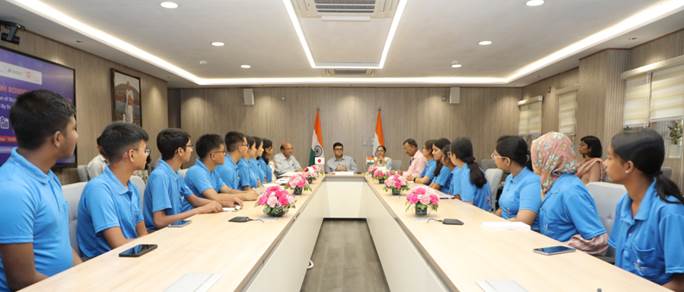
- 20 Jun 2025
In News:
- In June 2025, 20 Indian school students were officially flagged off by Shri Sanjay Kumar, Secretary, Department of School Education & Literacy (DoSEL), to participate in the prestigious Sakura Science High School Programme 2025 in Japan.
- The initiative reflects India's growing focus on international educational exposure, scientific collaboration, and experiential learning, in alignment with the vision of the National Education Policy (NEP) 2020.
About the Sakura Science Programme
- Launched by: Japan Science and Technology Agency (JST) in 2014.
- Objective: To promote science, technology, and innovation through Asia-wide youth exchanges.
- India’s Participation: Since 2016; over 619 students and 91 supervisors have participated till 2025.
- Participants (2025 batch):
- 20 students (7 boys, 13 girls) from Jawahar Navodaya Vidyalayas and government schools in Andaman & Nicobar Islands, Ladakh, Mizoram, Nagaland, and Tripura.
- Accompanied by 2 supervisors.
- Programme duration: 15–21 June 2025.
- Participating countries (2025): India, Malaysia, Taiwan, and Ukraine.
Key Features of the Programme
- Hands-on Learning: Visits to advanced scientific labs, tech demonstration centres, and universities in Japan.
- Cultural Exposure: Insight into Japanese traditions, societal values, and innovation ecosystem.
- International Peer Exchange: Interaction with students from other Asian nations to foster global scientific thinking.
Relevance to NEP 2020
The NEP 2020 advocates experiential, holistic, and integrated learning. It highlights:
- The need for educational excursions to places of scientific, cultural, and technological relevance.
- Promoting international collaborations that broaden the intellectual horizons of learners.
- Encouraging innovation through interdisciplinary exposure and real-world learning.
The Sakura Programme complements NEP 2020’s goals by offering Indian students a unique platform to explore global advancements in STEM (Science, Technology, Engineering, and Mathematics) fields.
Strategic Importance
- Science Diplomacy: Strengthens Indo-Japanese relations in education and technology.
- Youth Empowerment: Builds future-ready, globally aware scientific talent.
- Inclusivity: Focuses on students from remote and underserved regions, aligning with India’s equity-focused educational reforms.
Performance Grading Index (PGI) 2.0
- 20 Jun 2025
In News:
The Ministry of Education released the Performance Grading Index (PGI) 2.0 for the years 2022–23 and 2023–24, offering a comprehensive assessment of school education across States and Union Territories (UTs). This index, aligned with the National Education Policy (NEP) 2020 and Sustainable Development Goals (SDG 4), serves as a critical evidence-based framework for benchmarking educational performance in India.
About PGI 2.0
- Launched: 2017 (PGI 2.0 is the revised version)
- Published by: Ministry of Education, Government of India
- Purpose: Measures performance in school education using a data-driven approach
- Total Indicators: 73 across 6 domains
- Scoring: Out of 1000 points; graded into 10 performance bands:
- Daksh (951–1000) – Top
- Akanshi-3 (401–460) – Lowest
Domains Assessed
- Learning Outcomes and Quality
- Access to Education
- Infrastructure and Facilities
- Equity
- Governance Processes
- Teacher Education and Training
Key Highlights of PGI 2.0 (2022–24)
- Top Performer: Chandigarh with a score of 703, placed in the fifth band – Prachesta-1.
- Lowest Performer: Meghalaya, with 417 points, in the tenth and lowest band – Akanshi-3.
- No State/UT reached the top four bands (Daksh, Utkarsh, Ati Uttam, Uttam), indicating a national gap in quality education.
State-Wise Band Distribution
- Band 5 (Prachesta-1: 701–760): Chandigarh
- Band 7 (581–640): Punjab, Delhi, Gujarat, Odisha, Kerala, Haryana, Goa, Maharashtra, Rajasthan, and Dadra & Nagar Haveli & Daman & Diu
- Band 8 (521–580): 14 States/UTs
- Band 9 (461–520): 10 States/UTs
- Band 10 (Akanshi-3: 401–460): Meghalaya (only State in this band)
Performance by Domains
- Learning Outcomes: No State achieved the top four bands. Chandigarh, Punjab, and Puducherry performed relatively better (Prachesta-2).
- Access to Education: Odisha alone achieved the highest band (Daksh), while Bihar and Jharkhand showed notable progress.
- Infrastructure: Only Chandigarh featured in the third band (Ati Uttam), with Delhi and Dadra & Nagar Haveli in the next.
- Equity: All States placed in the top three bands, indicating relatively balanced access among social groups.
- Governance & Monitoring: Chandigarh excelled through digital governance and transparent fund utilization.
Significance for Policy and NEP 2020
- PGI 2.0 is pivotal in monitoring NEP 2020 implementation, especially for early-grade learning, infrastructure enhancement, equity, and governance.
- It identifies strengths and challenges, enabling targeted policy interventions.
- Despite infrastructure and access gains, quality of learning remains the most critical challenge.
PM-JANMAN and Dharti Aaba Initiatives
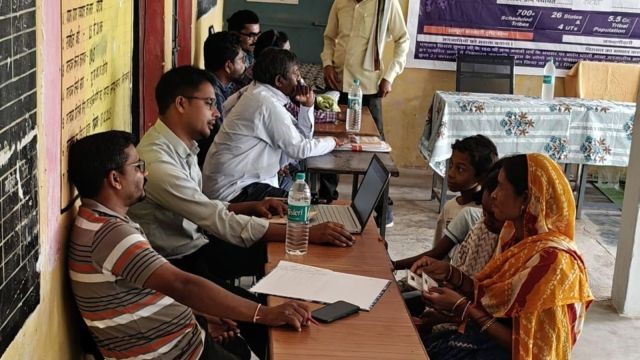
- 19 Jun 2025
In News:
- The Ministry of Tribal Affairs has launched a nationwide outreach campaign targeting over 500 districts and 1 lakh tribal-dominated villages and habitations.
- The campaign aims to ensure benefit saturation and last-mile delivery of welfare schemes under the Pradhan Mantri Janjati Adivasi Nyaya Maha Abhiyan (PM-JANMAN) and the Dharti Aaba Janjatiya Gram Utkarsh Abhiyan.
- This initiative is part of the ongoing Janjatiya Gaurav Varsh (Tribal Pride Year), a year-long celebration started on November 15, 2024 — the birth anniversary of Birsa Munda, a revered anti-colonial tribal icon.
Pradhan Mantri Janjati Adivasi Nyaya Maha Abhiyan (PM-JANMAN)
- Launched: 2023 on Janjatiya Gaurav Diwas
- Focus: Holistic development of Particularly Vulnerable Tribal Groups (PVTGs)
- Type: Includes both Central Sector and Centrally Sponsored Schemes
- Objectives:
- Safe housing (via PMAY)
- Clean drinking water
- Health, nutrition, and education access
- Road and telecom connectivity
- Electrification of unelectrified households
- Sustainable livelihood opportunities
- Time Frame: 3-year targeted implementation
- Vision: Supports Viksit Gaon, Viksit Bharat, and inclusive development with social justice
Dharti Aaba Janjatiya Gram Utkarsh Abhiyan
- Launched: October 2, 2024, by PM Modi in Jharkhand
- Named After: Birsa Munda, also known as Dharti Aaba (Father of the Earth)
- Aim: Transform tribal villages into centres of opportunity and dignity
- Approach:
- Multi-sectoral convergence with 17 line ministries
- 25 targeted interventions for integrated rural development
- Welfare activities include: hostel construction, rural electrification, livestock and fisheries support, housing under PMAY, etc.
- Budget Allocation (Union Budget 2025–26):
- Total: ?79,156 crore over 5 years
- Central Share: ?56,333 crore
- State Share: ?22,823 crore
Outreach Campaign (June 2025) Highlights
- Duration: Fortnight-long outreach starting June 15, 2025
- Coverage: 1 lakh tribal villages and habitations across 500+ districts
- Services at Doorstep:
- Aadhaar and Ayushman Bharat card enrollment
- Forest Rights Act (FRA) land title distribution
- Opening of pension and Jan Dhan accounts
- Goal: Awareness generation and saturation of benefits at block and hamlet levels
- Strategy: On-ground ‘benefit saturation camps’ to popularize uptake of the schemes
Significance
- Focus on PVTGs, who are the most marginalized among tribal communities
- Promotes digital inclusion, financial inclusion, and documentation access
- Demonstrates convergent governance through coordination across ministries
- Reinforces India’s tribal empowerment narrative and acknowledges historical contributions through Birsa Munda's legacy
‘Samarth’ Incubation Program
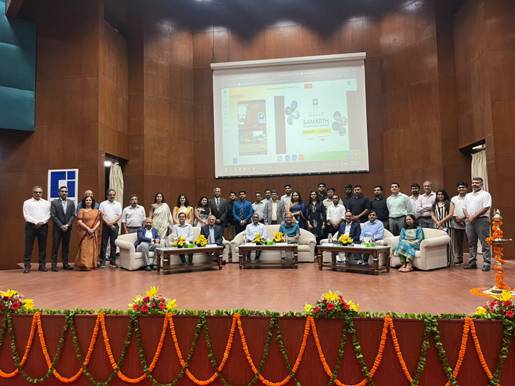
- 19 Jun 2025
In News:
The Centre for Development of Telematics (C-DOT), an autonomous R&D institution under the Department of Telecommunications (DoT), Government of India, has launched ‘Samarth’, a cutting-edge incubation program for startups in the Telecom and ICT sectors. In June 2025, C-DOT formally initiated Cohort-I of the program, selecting 18 startups through a competitive national process.
About the Samarth Program
- Objective: To nurture sustainable and scalable startups from ideation to commercialization in high-tech domains.
- Focus Areas:
- Telecom applications
- Cybersecurity
- 5G/6G technologies
- Artificial Intelligence (AI)
- Internet of Things (IoT)
- Quantum technologies
Key Features
Feature Details
Financial Support Grant of up to ?5 lakh per startup
Infrastructure Fully furnished office space at C-DOT campuses in Delhi and Bengaluru for 6 months
Technical Access Use of C-DOT’s lab facilities
Mentorship Guidance from C-DOT technologists and external domain experts
Format Hybrid (online + physical) delivery
Program Structure Two cohorts per year, each supporting up to 18 startups (max 36 annually)
Further Opportunities Eligible for extended collaboration and funding under C-DOT Collaborative Research Program (CCRP)
Implementation and Partnerships
- Implementation Partners:
- Software Technology Parks of India (STPI)
- TiE (The Indus Entrepreneurs) – Delhi NCR Chapter
- Evaluation Criteria: Startups were selected based on innovation, team strength, execution capability, problem-solution relevance, and commercialization potential.
- A distinguished Selection Committee from academia, industry, and government oversaw the evaluation.
Significance
- Boosts indigenous R&D in critical emerging tech sectors aligned with national priorities.
- Supports Atmanirbhar Bharat by encouraging homegrown innovation.
- Builds a robust startup ecosystem in the strategic telecom and ICT domains.
- Encourages public-private partnerships and collaboration between startups and research institutions.
Grand Cross of the Order of Makarios III
- 19 Jun 2025
In News:
During his official visit to Cyprus, Prime Minister Narendra Modi was conferred the Grand Cross of the Order of Makarios III, the highest civilian honour of Cyprus. This visit marked the first-ever visit by an Indian Prime Minister to the Mediterranean island nation.
About the Order of Makarios III
- Institution: Established in 1991.
- Named After: Archbishop Makarios III, the first President of the Republic of Cyprus.
- Nature: Cyprus’s highest merit-based honour, awarded to heads of state and individuals of significant global stature.
- Awarded By: The President of Cyprus.
- Grades:
- Grand Collar (highest)
- Grand Cross
- Grand Commander
- Commander
- Officer
- Knight
PM Modi received the Grand Cross, making him one of the few global leaders to be honoured at this level. The Prime Minister dedicated the award to the friendship between India and Cyprus, highlighting shared values and diplomatic ties.
Diplomatic and Economic Significance
- A roundtable interaction with top CEOs from both nations was held, focusing on deepening commercial and strategic engagement.
- Key sectors discussed:
- Innovation
- Energy
- Technology
- Trade and Investment
- PM Modi highlighted India's reform trajectory over the last decade, reinforcing India’s position as a growing economic partner.
Cyprus acknowledged this partnership, stating it was entering a "new era of strategic cooperation" with India, rooted in trust, shared values, and innovation.
Geographical Snapshot: Cyprus
- Region: Eastern Mediterranean
- Status: Eurasian island nation
- Capital: Nicosia
- Major Cities: Limassol, Larnaca, Famagusta, Paphos
- Highest Point: Mount Olympus (1,952 m)
- Size: Third-largest Mediterranean island after Sicily and Sardinia
International Big Cat Alliance (IBCA)
- 18 Jun 2025
In News:
The first General Assembly of the International Big Cat Alliance (IBCA) was held in New Delhi, marking a significant moment in global biodiversity governance. Chaired by Union Environment Minister Bhupender Yadav, who was unanimously elected President of the IBCA, the event underscored India’s leadership in international wildlife conservation diplomacy.
What is IBCA?
- The International Big Cat Alliance (IBCA) is a multinational initiative launched by India in March 2024 to conserve the world’s seven major big cat species—Tiger, Lion, Leopard, Snow Leopard, Cheetah, Jaguar, and Puma—through collective action, knowledge exchange, and capacity building.
- It is coordinated by the National Tiger Conservation Authority (NTCA) under the Ministry of Environment, Forest and Climate Change (MoEFCC).
- The Alliance was conceptualized following Prime Minister Narendra Modi’s announcement during the 50th anniversary of Project Tiger in April 2023.
Objectives of IBCA
- Promote global collaboration for the protection and conservation of big cats.
- Replicate successful conservation practices across member nations.
- Create a common pool of financial, technical, and institutional resources.
- Address gaps in capacity building, financing, and data sharing.
- Link conservation efforts with livelihood enhancement and climate resilience in big cat habitats.
- Strengthen efforts against poaching and illegal wildlife trade through joint surveillance and data exchange.
Membership
- 95 Range Countries (where the species naturally occur) are eligible to join.
- By September 2024, 25 countries including Bangladesh, Nigeria, Peru, and Ecuador had joined.
- Membership is open to all UN member states through a Note Verbale.
- The IBCA attained legal status after five countries—Nicaragua, Eswatini, India, Somalia, and Liberia—signed the Framework Agreement.
Key Functions of IBCA
- Shared Repository: Compilation of proven conservation strategies for scalable, science-based solutions.
- Training and Capacity Building: Organizes technical workshops and institutional exchanges.
- Scientific and Policy Support: Funds research, drives policy reforms, and raises awareness.
- Technological Innovation: Introduces advanced tools to tackle habitat degradation and prey base decline.
- Sustainable Livelihoods: Integrates conservation with community-based development models.
- Anti-Poaching Collaboration: Facilitates real-time data sharing and joint actions against wildlife trafficking.
Highlights from the 2025 General Assembly
- Venue: New Delhi, India
- Participating Nations: Ministerial delegations from nine countries including Bhutan, Cambodia, Kazakhstan, Liberia, Suriname, Somalia, Republic of Guinea, Eswatini, and India.
- Institutional Milestones:
- India ratified as the permanent headquarters of IBCA.
- The Headquarters Agreement was formally ratified, enabling the establishment of IBCA offices in India.
- Leadership: Bhupender Yadav, India’s Environment Minister, was elected as the first President of IBCA.
- Funding Commitment: India pledged ?150 crore (2023–28) to support IBCA’s establishment, coordination, and conservation activities.
Significance for India and the Global South
- Reinforces India’s role as a conservation leader and soft power in environmental diplomacy.
- Positions India as the epicentre for global big cat conservation, akin to its leadership in tiger conservation under Project Tiger.
- Encourages South-South cooperation in biodiversity preservation.
- Aligns with global commitments like CBD, CITES, and SDG 15 (Life on Land).
SIPRI Yearbook 2025
- 18 Jun 2025
In News:
The Stockholm International Peace Research Institute (SIPRI) has released its 2025 Yearbook, detailing global nuclear trends, armament expansions, and security concerns. The report highlights growing nuclear arsenals and modernisation efforts by all nine nuclear-armed states, including India, which increased its nuclear warhead stockpile in 2024.
India’s Nuclear Arsenal: Key Facts
- Warhead Count (Jan 2025): 180 (up from 172 in Jan 2024)
- India is expanding its nuclear delivery systems, including canisterised missiles that may carry mated or multiple warheads.
- India continues to invest in new-generation weapons and submarine-launched ballistic missiles.
Pakistan and China: Regional Dynamics
- Pakistan: Maintains ~170 warheads; developing new delivery systems and accumulating fissile material.
- China:
- Warheads (2025): 600 (24 deployed).
- Adding ~100 warheads annually since 2023.
- Constructing ~350 new ICBM silos.
- Expected to reach 1,000 warheads by 2032–33, possibly 1,500 by 2035.
Global Nuclear Overview (2025)
- Total nuclear warheads: 12,241
- Military stockpiles (available for use): 9,614
- Deployed warheads (with missiles/aircraft): 3,912
- High-alert warheads (on ballistic missiles): ~2,100 (mostly U.S. & Russia)
Country-wise Inventory Snapshot (2025):
- USA: 5,177 (1,770 deployed, 1,930 stored)
- Russia: 5,459 (1,718 deployed, 2,591 stored)
- China: 600
- India: 180
- Pakistan: 170
- Others: UK, France, Israel, North Korea
Emerging Concerns
- Arms Control Breakdown:
- No major nuclear power is showing full commitment to disarmament.
- New START Treaty (USA-Russia) expires in Feb 2026; no successor yet in sight.
- Potential for increase in deployed strategic warheads post-2026.
- Rising Crisis Risks:
- 2025 saw India-Pakistan tensions escalate to limited armed conflict.
- Strikes on nuclear-related military sites and disinformation increased nuclear risk.
- New Technologies & Doctrines:
- Countries are integrating MIRVs, canisterisation, and AI-based command systems.
- China may now keep warheads mounted during peacetime, like U.S. and Russia.
Military Spending and Arms Trade (2024)
- Global defence spending: $2.7 trillion (↑ 9.4%)
- Top military spenders:
- USA: $997 billion
- China: $314 billion
- Top arms importers: Ukraine, India, Qatar, Saudi Arabia, Pakistan
- Top arms exporters:
- USA: 43%
- France: 9.6%
- Russia: 7.8%
About SIPRI
- Founded: 1966, Stockholm, Sweden
- Focus: Independent research on conflict, arms control, nuclear disarmament, and security.
- Funded by: Swedish Parliament (core grant), plus support from global research bodies.
Cyprus & India-EU FTA
- 18 Jun 2025
In News:
Prime Minister Narendra Modi began his five-day, three-nation tour with a historic visit to Cyprus—the first by an Indian PM in over 20 years. His visit focused on strengthening economic ties and pushing forward the India–European Union Free Trade Agreement (FTA).
Key Highlights of the Visit
- India-EU FTA Commitment: PM Modi announced that India and the EU are committed to concluding a Free Trade Agreement by the end of 2025. Negotiations have gained momentum.
- India–Cyprus Economic Engagement:
- Addressed the India-Cyprus CEO Forum in Limassol, pitching India as a hub for digital innovation and infrastructure.
- Highlighted India’s digital growth: Over 50% of global digital transactions via UPI originate from India. Talks are ongoing to onboard Cyprus into UPI.
- Announced a new shipbuilding policy and noted an annual investment of USD 100 billion in infrastructure.
- Supported the launch of the India–Cyprus–Greece Business and Investment Council, promoting trilateral cooperation.
- Welcomed the NSE–Cyprus Stock Exchange partnership in GIFT City, Gujarat.
- Startup and Innovation Focus: Emphasised India's vibrant startup ecosystem with over 1 lakh startups offering innovative, scalable solutions.
About Cyprus – Key Facts for Prelims
- Location: Eurasian island in the northeastern Mediterranean Sea, south of Turkey and southeast of Greece.
- Capital: Nicosia
- Area: 9,251 sq. km (3rd largest island in the Mediterranean after Sicily and Sardinia)
- Climate: Mediterranean – dry summers and wet winters
- Highest Point: Mount Olympus (1,952 m)
Geopolitical Context
- Divided Island:
- Since 1974, Cyprus has been partitioned between a Turkish-controlled north and a Greek-Cypriot-controlled south.
- Only Turkey recognises Northern Cyprus as an independent state.
- A UN-patrolled Green Line separates the two regions.
- Political System: Presidential republic – the President is both head of state and government.
- Official Languages: Greek and Turkish
- EU Membership: Joined the European Union on May 1, 2004
- Major Cities: Limassol, Larnaca, Famagusta, Paphos
Radio Nellikka

- 17 Jun 2025
In News:
Chief Minister Pinarayi Vijayan inaugurated Radio Nellikka, an internet radio for children launched by the Kerala State Commission for Protection of Child Rights (KeSCPCR) on June 2025.
What is Radio Nellikka?
- A child-centric internet radio platform launched by KeSCPCR.
- Aims to promote child rights, awareness, and safety through audio content.
- Accessible globally, with 4 hours of programming from Monday to Friday (new content), and repeats on weekends.
- Launch included unveiling of the radio's logo and theme song.
Objectives
- Create a child-friendly Kerala through rights-based literacy.
- Spread awareness on child protection laws, mental health, substance abuse, and cyber safety.
- Empower children with knowledge and build resilience against social challenges.
- Promote responsible parenting and community involvement in child welfare.
Significance
- Addresses rising challenges: social media addiction, cyber threats, child suicides, and mental health issues.
- Provides accessible, engaging content to both children and guardians.
- Acts as a preventive and educational tool against misinformation related to child rights.
- Supports emotional and legal literacy in a format suited for young audiences.
DNA Identification in Mass Fatality Events
- 17 Jun 2025
In News:
Following the tragic crash of an Air India Boeing 787 Dreamliner from Ahmedabad to London Gatwick (June 2025), authorities have initiated DNA-based identification to match the remains of victims. In mass fatality incidents where bodies are mutilated or decomposed, DNA analysis becomes the gold standard for establishing identity.
What is DNA Identification?
DNA (Deoxyribonucleic Acid) is a unique genetic code present in almost every cell of the human body, with the exception of identical twins. It is widely used in forensic science for accurate identification, particularly in disasters where visual identification is impossible.
Sample Collection and Preservation:
- DNA begins degrading post-mortem, and the rate of degradation is influenced by:
- Type of tissue (soft vs hard)
- Environmental conditions (humidity, temperature)
- Hard tissues such as bones and teeth are preferred due to better preservation against decomposition.
- Soft tissues (like skin and muscle) degrade faster and, if used, must be stored in 95% ethanol or frozen at -20°C.
- In large-scale accidents, sample collection from wreckage can take weeks or even months (e.g., 9/11 took 10 months).
Reference Samples:
To match unidentified remains, reference DNA is taken from biological relatives—preferably parents or children of the victims, who share about 50% of their DNA.
Methods of DNA Analysis:
1. Short Tandem Repeat (STR) Analysis:
- Evaluates short, repeating DNA sequences that vary among individuals.
- Requires nuclear DNA, hence not suitable if the DNA is highly degraded.
- Analysis of 15+ hyper-variable STR regions can confirm family relationships with high accuracy.
2. Mitochondrial DNA (mtDNA) Analysis:
- Used when nuclear DNA is not recoverable.
- mtDNA is inherited exclusively from the mother and is present in multiple copies per cell.
- Effective for matching with maternal relatives (e.g., mother, maternal uncles/aunts, siblings).
3. Y-Chromosome Analysis:
- Targets male-specific genetic material.
- Useful for identifying remains using DNA from paternal male relatives (father, brothers, paternal uncles).
- Helpful when direct relatives are unavailable but male-line relatives exist.
4. Single Nucleotide Polymorphisms (SNPs) Analysis:
- Suitable when DNA is highly degraded.
- Analyzes variations at single base-pair locations in DNA.
- Can also match DNA with personal items like a toothbrush or hairbrush.
- However, less accurate than STR analysis.
Significance for Disaster Management and Forensics:
- DNA-based victim identification ensures scientific accuracy, aiding in closure for families, and upholding legal and humanitarian obligations.
- Modern forensic genetics has become an essential tool in mass disaster response protocols worldwide.
Global Education Monitoring (GEM) Report 2025
- 16 Jun 2025
In News:
The Global Education Monitoring (GEM) Report 2025, published by UNESCO, reveals an alarming surge in the global out-of-school population, now estimated at 272 million—an increase of over 21 million from previous estimates. This setback highlights that by 2025, countries will collectively fall short of their national education targets by 75 million children.
About the GEM Report
- An annual UNESCO publication, originally launched as the Education for All Global Monitoring Report in 2002 and renamed in 2016.
- Provides an evidence-based global assessment of education progress, challenges, and trends.
- Aims to guide policy decisions and strengthen efforts toward achieving SDG 4 (Quality Education).
Key Findings
- The out-of-school population includes:
- 78 million primary school-age children (11%)
- 64 million lower secondary adolescents (15%)
- 130 million upper secondary youth (31%)
- The rise of 21 million in out-of-school children since the last estimate is attributed to:
- New enrolment and attendance data (+8 million): Includes factors like the 2021 ban on girls' education in Afghanistan, which alone accounts for 1.4 million girls.
- Updated UN population projections (+13 million): The 2024 World Population Prospects estimate a 49 million increase in the global school-age population (6–17 years) by 2025.
- The report warns that conflict zones severely hamper data collection, likely underestimating the true number of out-of-school children.
Challenges with Data and Methodology
- The GEM model draws from administrative data, surveys, and census records to estimate schooling trends.
- However, during emergencies and crises, such models may fail to capture sudden drops in attendance, leading to an underreporting of affected populations.
- Conflict-ridden regions face poor data reliability, impacting planning and resource allocation.
Off-Track from Global Targets
- By 2025, countries will be off-track by:
- 4 percentage points for primary and lower secondary levels
- 6 percentage points for upper secondary level
- Even if national targets are met, the world will still have 107 million children out of school by 2030. The GEM report projects a reduction of 165 million if all targets are achieved—but current trajectories suggest this is unlikely.
Black Boxes in Aviation

- 16 Jun 2025
In News:
The tragic crash of an Air India Boeing 787-8 Dreamliner from Ahmedabad to London Gatwick on June 12, 2025, has spotlighted the critical role of black boxes—a key component in aviation safety and accident investigations. Despite their name, these devices are painted bright orange for easy visibility at crash sites.
What are Black Boxes?
Modern aircraft are equipped with two essential flight recorders:
- Cockpit Voice Recorder (CVR): Captures pilot and co-pilot conversations, ambient cockpit sounds, alarms, and radio transmissions.
- Flight Data Recorder (FDR): Records up to 25 hours of technical flight data including altitude, speed, engine parameters, flight path, and over 3,500 variables.
These devices operate continuously without interruption, storing vital information that can reconstruct the events leading up to an air crash.
Design and Durability
Black boxes are built to withstand extreme conditions:
- Casing: Made from crash-resistant materials like titanium or steel.
- Survivability: Can endure temperatures up to 1,100°C, high-impact G-forces, and remain underwater for up to 30 days.
- Locator Beacon: Emit signals to help recovery teams locate them, especially in underwater crashes.
Why Are They Called 'Black' Boxes?
The term “black box” originated from early film-based recorders stored in light-tight boxes. However, modern units are painted bright orange with reflective strips to aid visual detection after accidents.
Evolution of Flight Recorders
- 1930s: François Hussenot in France developed early photographic film-based recorders.
- 1953-54: Dr. David Warren in Australia invented the modern FDR while investigating unexplained crashes of the de Havilland Comet.
- 1960: Mandatory installation of CVRs and FDRs in commercial aircraft.
- 1965: Regulators required recorders to be painted in visible colours.
- 1990: Solid-state memory replaced magnetic tapes, increasing durability and storage capacity.
India's Aircraft Accident Investigation Bureau (AAIB), under the Ministry of Civil Aviation, oversees accident probes. In April 2025, it established a dedicated flight recorder laboratory in New Delhi to improve investigation efficiency.
Technological Advancements
- Combined Recorders: Modern systems often integrate CVR and FDR in a single unit to meet ICAO norms for extended recording.
- Deployable Recorders: Automatically ejected during a crash, float on water, and transmit their location using an Emergency Locator Transmitter (ELT).
- Satellite-Based Data Streaming: Future technologies aim to stream flight data in real time, minimizing data loss during oceanic crashes.
Black boxes serve as the backbone of aviation accident investigations by providing critical insight into aircraft performance and crew actions before a crash. Their development reflects ongoing efforts to enhance air travel safety and accountability. The Ahmedabad crash investigation led by the AAIB will heavily rely on these devices to determine the exact sequence of events and prevent future tragedies.
Exercise Shakti 2025
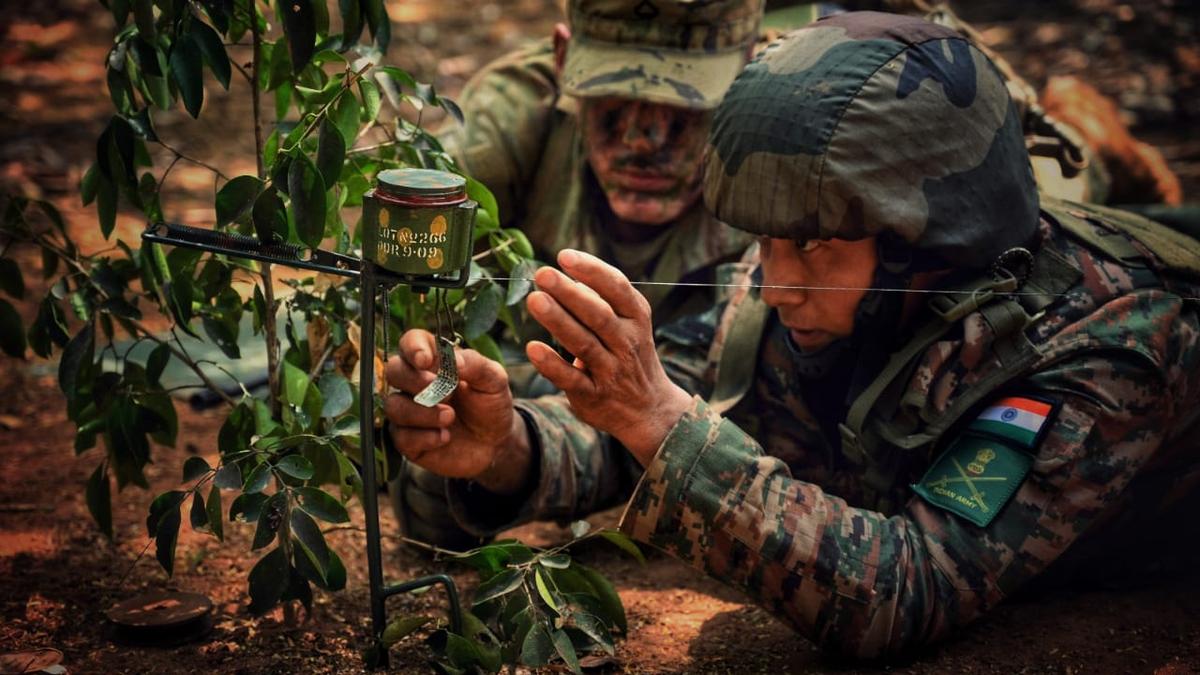
- 14 Jun 2025
In News:
The 8th edition of Exercise Shakti, a bilateral joint military exercise between India and France, is being held from 18 June to 1 July 2025 at La Cavalerie, France.
About Exercise Shakti
- Type: Joint military exercise between the Indian Army and French Army.
- Edition: 8th edition. The previous edition was hosted by India, as the exercise is biennial and conducted alternately in both countries.
- Venue (2025): La Cavalerie, France.
Objective and Significance
- Primary Aim: To enhance the joint military capability of both nations to conduct Multi-Domain Operations in sub-conventional conflict scenarios.
- Focus Areas:
- Developing interoperability in operations.
- Sharing best practices, tactics, techniques, and procedures.
- Strengthening military-to-military cooperation.
- Fostering bonhomie and camaraderie between the two armies.
Strategic Importance
- Exercise Shakti is part of the broader defence partnership between India and France, encompassing counter-terrorism, peacekeeping, and multi-domain coordination.
- It reflects India’s growing strategic engagements with like-minded global partners to address emerging security challenges.
Other India–France Joint Exercises
Name Domain Participants
Garuda Air Indian Air Force – French Air and Space Force
Varuna Naval Indian Navy – French Navy
Desert Knight Air Indo-French air warfare cooperation
Lokpal of India adopts new motto
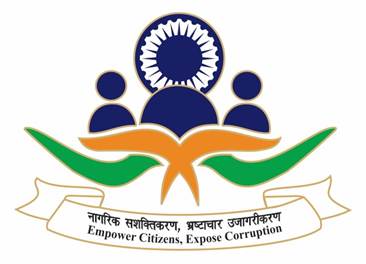
- 13 Jun 2025
In News:
The Full Bench of the Lokpal of India has officially adopted a new motto — “Empower Citizens, Expose Corruption” — replacing the earlier Sanskrit phrase:
Old Motto: Ma Gridhah Kasyasvid Dhanam (Do not be greedy for anyone’s wealth)
The change aims to improve institutional visibility, enhance public engagement, and reaffirm the Lokpal’s mission to fight corruption by empowering the people.
About Lokpal of India
- Established under: Lokpal and Lokayuktas Act, 2013
- Came into force: 16 January 2014
- Headquarters: Vasant Kunj, New Delhi
- Nature: Independent statutory anti-corruption body
Composition
- Chairperson: Former Chief Justice of India or SC Judge
- Members: Up to 8 members
- 4 Judicial
- 4 Non-Judicial
- Appointed by: President of India on recommendation of a high-level Selection Committee
Jurisdiction
Lokpal can investigate allegations of corruption against:
- Prime Minister, Union Ministers, and Members of Parliament
- Central Government employees (Group A to D)
- Officials of organizations receiving govt. funding (full/partial)
- Entities receiving foreign donations over ?1 crore annually
Functions & Powers
- Investigates complaints under the Prevention of Corruption Act, 1988
- Can:
- Sanction prosecution
- Order attachment of properties
- Recommend suspension or transfer of officials
- Possesses powers of a civil court:
- Summon witnesses
- Seize documents
- Can supervise the CBI in referred cases
- Collaborates with other investigative and enforcement agencies
Why the New Motto Matters
The new motto, “Empower Citizens, Expose Corruption”, reflects:
- A citizen-centric approach to governance
- A renewed commitment to transparency, accountability, and institutional trust
- The evolving role of Lokpal in aligning public participation with anti-corruption efforts
Exercise KHAAN QUEST 2025
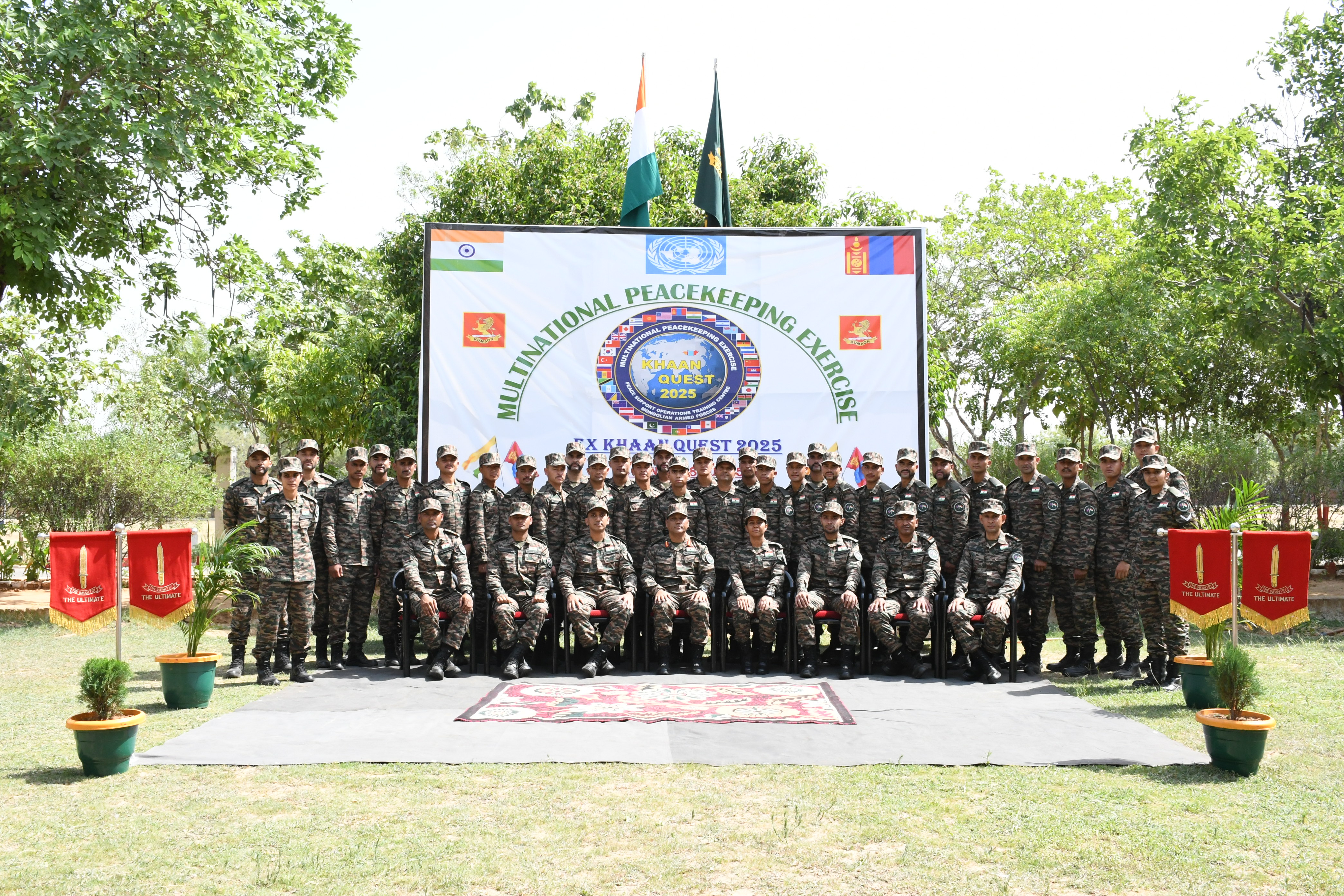
- 13 Jun 2025
In News:
The Indian Army contingent has arrived in Ulaanbaatar, Mongolia, to take part in the 22nd edition of the Multinational Peacekeeping Exercise KHAAN QUEST, scheduled from 14 to 28 June 2025.
About Exercise KHAAN QUEST
- Origin: Launched in 2003 as a bilateral exercise between the USA and Mongolian Armed Forces.
- Multinational Format: Expanded in 2006 to include multiple countries, now recognized as a major UN peacekeeping readiness exercise.
- 2024 Edition: Held from 27 July to 9 August in Mongolia.
- India’s Participation: Contingent Strength: 40 personnel, primarily from a Battalion of the Kumaon Regiment, supported by members from other arms and services.
Aim and Objectives
- Enhance readiness for UN peacekeeping operations under Chapter VII of the UN Charter.
- Promote interoperability, joint tactical planning, and multinational cooperation.
- Share best practices in peace support operations.
Key Tactical Drills
- Static and Mobile Checkpoint Setup
- Cordon and Search Operations
- Patrolling and Evacuation of Civilians from conflict zones
- Counter-IED procedures
- Combat First Aid and Casualty Evacuation
Significance
Exercise KHAAN QUEST serves as a critical platform for building military-to-military cooperation, strengthening international partnerships, and improving operational cohesion among troops from around the world.
International Organization for Marine Aids to Navigation (IALA)
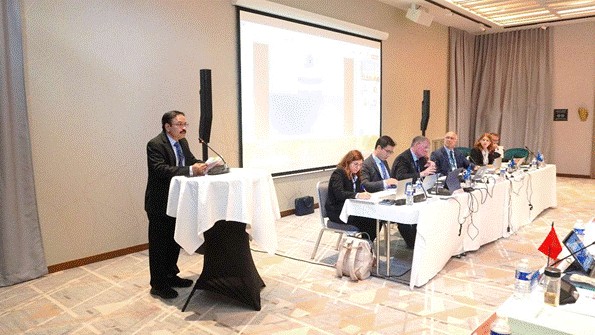
- 13 Jun 2025
In News:
India, as the Vice President of the International Organization for Marine Aids to Navigation (IALA), actively participated in the 2nd Session of the IALA Council, held in Nice, France.
What is IALA?
The International Organization for Marine Aids to Navigation (IALA) is a global intergovernmental technical body responsible for:
- Standardizing marine navigation aids (AtoN)
- Enhancing maritime safety
- Promoting environmental protection in marine navigation
Key Facts:
- Established: 1957 (as an NGO; became an IGO in 2024)
- Headquarters: Saint-Germain-en-Laye, near Paris, France
- Members: 39 countries
- Status: Transitioned to an Intergovernmental Organization in August 2024 after ratification by 30 states
India’s Role in IALA
India has been a Council Member since 1980, and was elected Vice President (2023–2027) during the 1st General Assembly in Singapore in 2023 — a significant recognition of India’s leadership in maritime affairs.
Major Indian Contributions:
- Development of Vessel Traffic Services (VTS) across 12 major ports
- Leadership in digital navigation aids and maritime innovation
- Promoting lighthouse heritage tourism
- Launching global training programs at the Kolkata Marine Navigation Training Institute
Highlights from the 2nd IALA Council Session
- Keynote: Outlined India’s achievements in integrating marine AtoN and future roadmap
- Technical Discussions:
- Standardization of AtoN and VTS systems
- Harmonized IoT protocols for visual AtoN
- Maritime Service Registry development
- Lighthouse heritage conservation
- Planning IALA’s global activity schedule for 2025–2026
India to Host Key IALA Events
- 3rd IALA General Assembly – December 2025, Mumbai
- 21st IALA Conference – 2027, Mumbai
This reflects global confidence in India’s technical capabilities and strategic importance in the maritime domain.
Significance:
- Strategic Leadership: Reinforces India’s influence in international maritime governance.
- Digital Maritime Innovation: India is contributing to cutting-edge technologies like IoT protocols and digital AtoN.
- Global Capacity Building: Hosting and training initiatives bolster the global maritime workforce.
- Cultural Diplomacy: Lighthouse tourism and heritage preservation align technology with history.
State of the World Population Report 2025
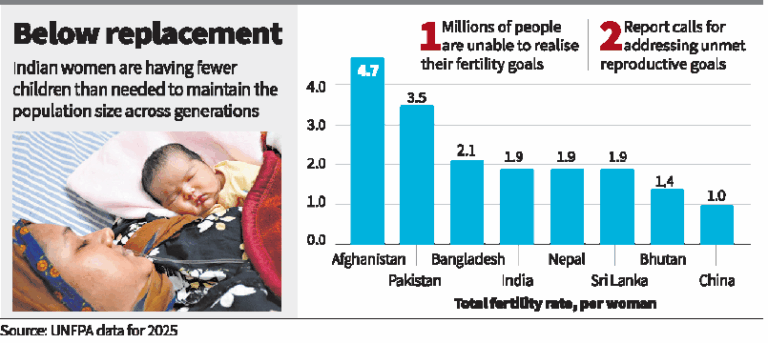
- 12 Jun 2025
In News:
According to the United Nations Population Fund’s (UNFPA) State of the World Population Report 2025, India’s population has reached 146.39 crore as of April 2025, surpassing China (141.61 crore) to remain the world’s most populous country. Importantly, India’s Total Fertility Rate (TFR) has declined to 1.9, falling below the replacement level of 2.1.
Key Highlights:
Population Growth and Future Projections
- Current population (2025): 146.39 crore
- Projected peak: 170 crore in the next 40 years, after which population will begin to decline.
- Working-age population (15–64 years): 68%
- Youth population:
- 0–14 years: 24%
- 10–19 years: 17%
- 10–24 years: 26%
- Elderly population (65+ years): 7% (expected to rise steadily)
Fertility Trends and the Real Crisis
What is TFR?
- Total Fertility Rate measures the average number of children a woman is expected to have in her lifetime.
- Replacement level TFR: 2.1 (to maintain population size across generations)
- India’s TFR in 2025: 1.9, marking a demographic shift toward stabilization.
Fertility Divergence Across States:
- High TFR states: Bihar, Uttar Pradesh, Jharkhand
- Low TFR states: Kerala, Tamil Nadu, Delhi – already below replacement level
The Real Fertility Crisis (UNFPA View):
- The true concern is unmet fertility goals, not overpopulation or underpopulation.
- Barriers to achieving desired family size:
- Financial constraints (40%)
- Job insecurity (21%) and housing issues (22%)
- Lack of childcare (18%)
- Social/family pressures (19%)
- Modern concerns like climate change and shifting gender norms
Structural & Social Challenges
- Persisting inequalities in access to reproductive health across caste, income, and regional lines
- Youth bulge in LMICs (including India) offers demographic dividend but needs skill-building and employment opportunities
- Ageing population calls for future-proof policies on healthcare, pensions, and social security
Life Expectancy & Data Reliability
- Life expectancy (2025):
- Men: 71 years
- Women: 74 years
- Data drawn from: DHS, MICS, World Population Prospects 2024, Family Planning Indicators (2024)
- India’s decennial Census delayed to 2027, limiting official data updates since 2011
UNFPA Recommendations for India:
- Expand SRH (Sexual & Reproductive Health) Services: Universal access to contraception, safe abortion, and infertility care
- Tackle Structural Barriers: Affordable housing, childcare, flexible work policies, and women’s education
- Promote Reproductive Agency: Ensure informed choices on family planning for all, including LGBTQIA+ and unmarried individuals
- Balance Youth & Elderly Policies: Invest in youth employability while preparing for ageing-related challenges
National Investment and Infrastructure Fund (NIIF)
- 11 Jun 2025
In News:
Union Finance Minister chaired the 6th Governing Council (GC) meeting of NIIF in New Delhi. The Council urged NIIF to enhance its global presence, diversify funding sources, and attract international investors by leveraging its sovereign-backed model.
About National Investment and Infrastructure Fund
- A government-anchored investment platform to mobilize long-term institutional capital for infrastructure and strategic sectors.
- Operates as a sovereign wealth fund (SWF)-linked asset manager with independent governance.
- Established: 2015 (Union Budget 2015–16)
- Headquarters: Mumbai
- Nodal Ministry: Ministry of Finance (Department of Economic Affairs)
Functions & Objectives:
- Capital Mobilization: Attract domestic & global institutional investors.
- Investment Management: Deploy equity in commercially viable infrastructure.
- Strategic Partnerships: Collaborate with global sovereign wealth & pension funds.
- Policy Alignment: Support national initiatives like Make in India, green energy, and digital infrastructure.
Key Features:
- Public-Private Structure:
- 49% Government of India
- 51% Global and domestic institutional investors (e.g., ADIA, Temasek, CPPIB)
- SEBI-Registered AIF: Category II Alternative Investment Fund (AIF)
- Assets Under Management (AUM): ?30,000+ crore
- Capital Catalysed: ?1.17 lakh crore
- CEO & MD: Sanjiv Aggarwal (since Feb 2024)
Funds under NIIF:
- Master Fund: Core infrastructure (ports, airports, data centres, logistics)
- Private Markets Fund (PMF): Fund of funds model
- India-Japan Fund: Focused on climate action and sustainability
- Strategic Opportunities Fund: Growth equity in strategic sectors
Governing Council (GC) of NIIF:
- Chair: Union Finance Minister (currently Nirmala Sitharaman)
- Members include Finance Secretary, DEA/DFS officials, SBI Chairman, private sector leaders.
- Provides strategic guidance on:
- Fundraising
- Global positioning
- Operationalisation of new funds
- Annual review of performance
Key Outcomes of the 6th GC Meeting (2024–25):
- Proactive Global Outreach: GC urged NIIF to enhance its global presence and professionalise international engagement.
- Diversified Fundraising: Encouraged exploring multiple funding sources beyond traditional sovereign investors.
- Private Markets Fund II (PMF II): Target corpus: $1 billion; first closing imminent.
- Bilateral Fund with the USA: Under discussion to foster cross-border infrastructure investments.
- Greenfield Investment Success: Master Fund investments directed toward ports, logistics, airports, data centres.
- Strong Global Partnerships: Includes ADIA, Temasek, Ontario Teachers', CPPIB, AIIB, ADB, JBIC, and NDB.
- Annual Meetings: GC to convene once every year to review and guide NIIF’s evolving role.
India’s Breakthrough in Heeng Cultivation
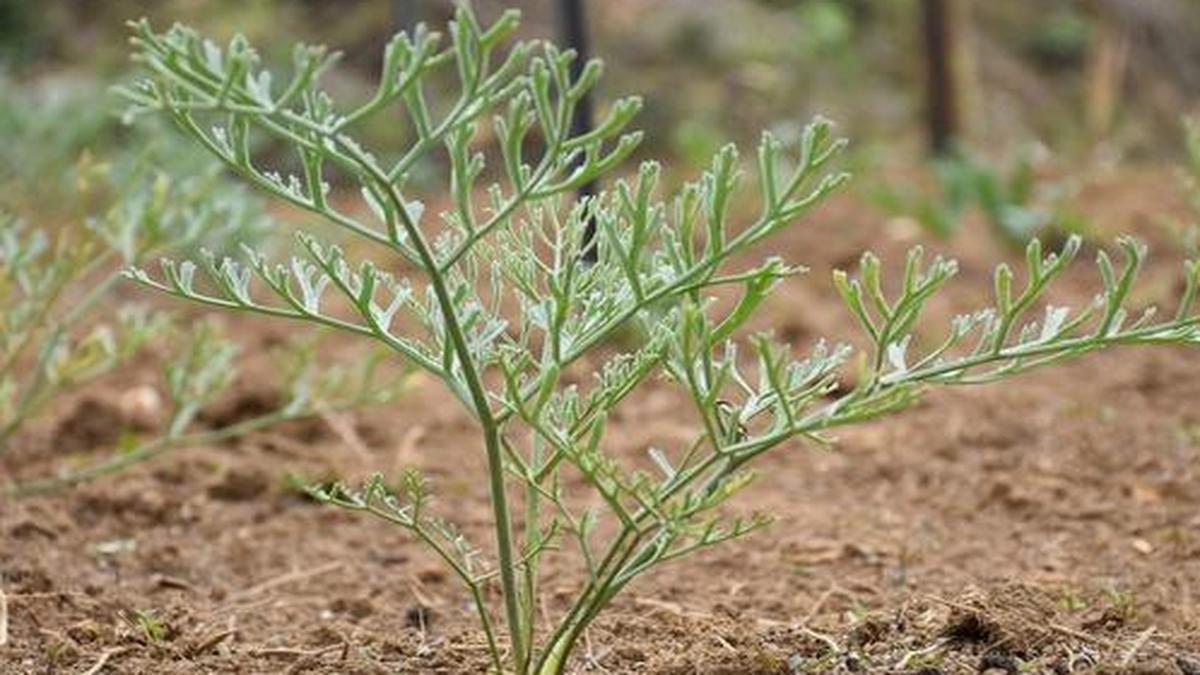
- 11 Jun 2025
In News:
CSIR-IHBT reported the first flowering and seed setting of heeng in Palampur (1,300 m above sea level). This confirmed the successful acclimatisation and domestication of Ferula assa-foetida in Indian agro-climatic conditions.
This milestone is significant because:
- It proves India’s capability to cultivate heeng domestically.
- It completes the reproductive cycle—a prerequisite for long-term commercial production and sustainability.
- It expands the scope of cold-arid agriculture beyond traditional zones.
Background:
- Heeng or asafoetida (Ferula assa-foetida) is a perennial herb, long revered in Indian culinary and medicinal traditions.
- It is widely mentioned in ancient texts such as the Mahabharata, Charaka Samhita, Pippalada Samhita, and the works of Panini, known for its digestive, aromatic, and therapeutic properties.
- Despite being the world’s largest consumer of heeng, India was entirely import-dependent until the early 2010s, sourcing it mainly from Afghanistan, Iran, and Uzbekistan.
- This was because the species Ferula assa-foetida, the true source of asafoetida, was not found in India—only related species like Ferula jaeschkeana (Himachal Pradesh) and Ferula narthex (Kashmir and Ladakh) existed, which do not yield the culinary resin.
Botanical & Climatic Requirements:
- Plant Type: Perennial, takes about 5 years to mature and flower.
- Soil: Prefers sandy, well-drained soil with low moisture.
- Climate: Thrives in cold, arid environments, requires annual rainfall below 200–300 mm.
- Temperature Range: Grows best in 10–20°C, tolerates up to 40°C, and survives winter lows of –4°C.
- Propagation: The oleo-gum resin (asafoetida) is extracted by making incisions in the plant’s fleshy taproot and rhizome, yielding a latex that hardens into a gum, which is dried into powder or crystal form.
The Indigenous Cultivation Effort:
In a major step toward self-reliance, the Council of Scientific and Industrial Research – Institute of Himalayan Bioresource Technology (CSIR-IHBT) in Palampur, Himachal Pradesh, initiated India’s first project for indigenous heeng cultivation.
- Seed Procurement: Between 2018–2020, IHBT coordinated with agencies and suppliers in Iran, Afghanistan, Uzbekistan, Tajikistan, and South Africa. Seeds were finally procured from Iran and Afghanistan with import approvals and quarantine protocols handled by ICAR-National Bureau of Plant Genetic Resources (NBPGR).
- Research and Trials: Researchers developed germination protocols for seeds with low viability and conducted trials at IHBT Palampur and Ribling in Lahaul-Spiti to determine altitude-specific suitability and agronomic practices.
- Milestone Event: On October 15, 2020, the first heeng sapling was planted in a farmer’s field in Kwaring village, Lahaul Valley—marking the start of India’s heeng cultivation journey.
Expansion and Institutional Support:
- New Cultivation Zones: From cold desert areas, cultivation extended to mid-hill regions such as Janjheli in Mandi. Demonstration plots and farmer training programmes were established across Lahaul-Spiti, Kinnaur, Mandi, Kullu, and Chamba.
- Early Adopter Villages:
- Lahaul & Spiti: Madgran, Salgran, Beeling, Keylong
- Mandi: Janjehli, Kataru, Majhakhal, Karsog
- Kinnaur: Kalpa, Hango, Reckong Peo, Maling
- Kullu: Kotla–Banjar, Bagsaid, Dhaugi–Sainj
- Chamba: Pangi, Bharmour, Tooh, Mahala
- Heeng Germplasm Resource Centre: Established at IHBT Palampur in March 2022, this national hub oversees research, conservation, seed production, and propagation of heeng.
- Tissue Culture Innovation: A dedicated lab was developed to scale up propagation using modern techniques, supported by the Government of Himachal Pradesh. Ecological niche modelling using GPS and climate data helped map ideal cultivation areas.
Stratospheric Aerosol Injection (SAI)
- 10 Jun 2025
In News:
A study recently published in the journal Earth’s Future offered an innovative approach to SAI technique that could reduce its costs but also bring it closer to fruition despite the opposition to it.
What is Stratospheric Aerosol Injection (SAI)?
- SAI is a proposed solar geoengineering technique to cool the Earth by injecting reflective aerosols (e.g. sulphur dioxide) into the stratosphere to reflect sunlight and reduce surface temperatures.
- Inspired by volcanic eruptions, like Mount Pinatubo (1991), which naturally cooled the Earth by emitting aerosols.
Recent Study Highlights (June 2025)
- Published in Earth’s Future journal.
- Led by Alistair Duffey, University College London.
- Used UK Earth System Model 1 (UKESM1) for climate simulations.
Key Findings
- Injecting 12 million tonnes of sulphur dioxide annually at 13 km altitude (spring/summer in each hemisphere) could cool the Earth by ~0.6°C.
- To cool by 1°C, ~21 million tonnes/year are needed at that altitude.
- Only 7.6 million tonnes/year are needed at higher altitudes (subtropics) for the same cooling.
Innovative Proposal
- Low-altitude SAI using modified existing aircraft (e.g. Boeing 777F) instead of specially designed high-altitude aircraft:
- Stratosphere is lower near poles (12–13 km), so current aircraft can reach it.
- Cost-effective and faster to deploy than high-altitude (~20 km) methods.
- Could begin within years, rather than a decade-long wait for new aircraft.
Risks and Concerns
- Tripling aerosol quantity (in low-altitude strategy) raises:
- Ozone depletion
- Acid rain
- Altered weather patterns
- Uneven global effects (benefits poles more, tropics less)
- Moral hazard: may reduce incentives to cut emissions.
- Governance challenge: One country’s action impacts all nations → risk of geopolitical conflict.
Why it matters
- Global GHG emissions are still rising.
- Climate mitigation through decarbonisation is slow and politically vulnerable.
- Technologies like SAI offer a stopgap, but not a substitute for emission cuts.
RBI Revises LTV Ratio for Gold-Backed Loans
- 09 Jun 2025
In News:
- The Reserve Bank of India (RBI) has announced revised guidelines to enhance formal sector lending and ease credit access for small-ticket gold loan borrowers, especially in rural and semi-urban areas.
- The new norms focus on raising the Loan-to-Value (LTV) ratio for gold-backed loans up to ?5 lakh and simplifying appraisal norms for such loans.
What is the Loan-to-Value (LTV) Ratio?
- Definition: The LTV ratio is the percentage of a collateral’s value that a lender offers as a loan.
- Formula:
LTV Ratio= (Loan Amount / Appraised Value of Asset) × 100
- A higher LTV indicates greater credit against the same asset but also entails higher risk for the lender.
- Assets like gold, with a stable value and liquid secondary market, are more "desirable" as collateral, often attracting higher LTVs.
Revised RBI Guidelines (June 2025): LTV Ratio for Gold Loans
Loan Amount Revised LTV Ratio Previous LTV (Draft April 2025)
Up to ?2.5 lakh 85% 75%
?2.5 lakh – ?5 lakh 80% 75%
Above ?5 lakh 75% 75%
- The interest component is included in the LTV calculation.
- The move reverses the uniform 75% LTV cap proposed in the April 2025 draft norms.
Additional Key Features
- No credit appraisal required for loans up to ?2.5 lakh.
- End-use monitoring is necessary only if the borrower wishes to qualify the loan under priority sector lending.
- The average ticket size of gold loans (~?1.2 lakh) is expected to increase due to relaxed norms.
- These loans are crucial for middle-class, lower middle-class, self-employed, and small businesses, often lacking formal income proof.
Rationale and Impact
- The revised norms aim to:
- Enhance credit accessibility.
- Prevent migration of borrowers to informal lenders.
- Boost financial inclusion and formalize rural credit ecosystems.
- Industry experts and NBFCs like Muthoot FinCorp and Shriram Finance have welcomed the move, noting it would benefit women, rural borrowers, and small traders.
- Shares of leading gold loan NBFCs like Muthoot Finance, Manappuram Finance, and IIFL Finance witnessed a sharp increase following the announcement.
Index Cards
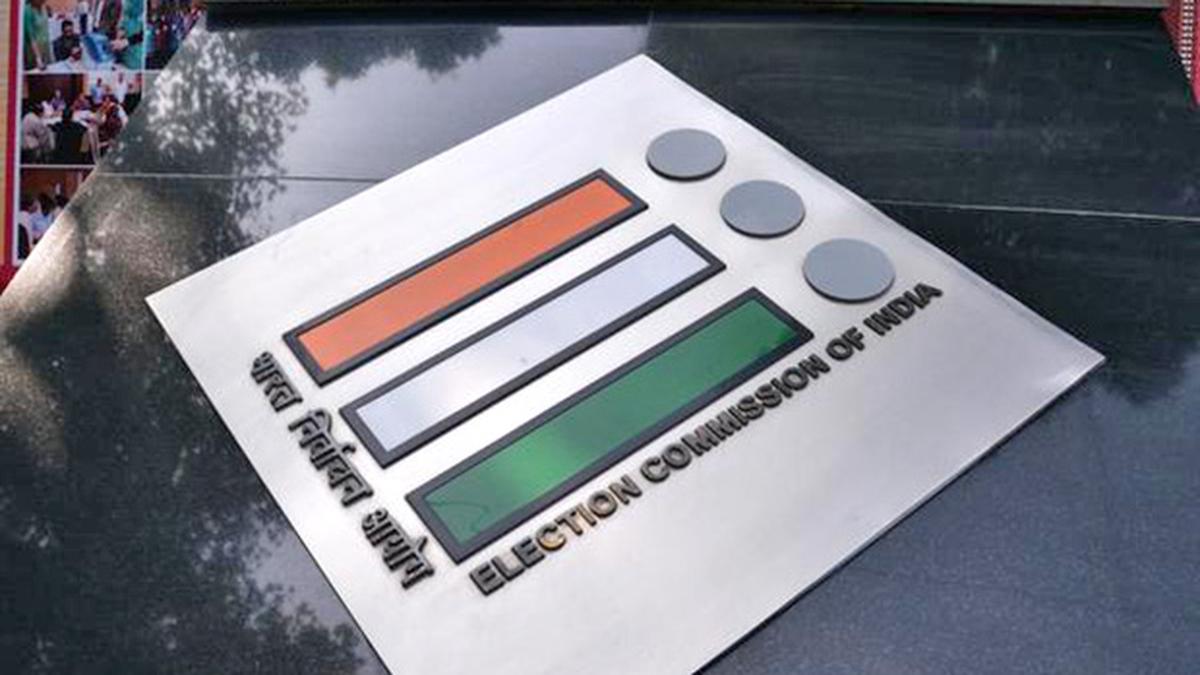
- 09 Jun 2025
In News:
The Election Commission of India (ECI) has recently upgraded the mechanism for generating Index Cards, making it more technology-driven and automated. Index Cards are a non-statutory, post-election statistical reporting format developed suo moto by the ECI to enhance transparency and accessibility of electoral data at the constituency level.
Purpose and Utility
Index Cards are designed to compile and disseminate election-related data for use by:
- Researchers
- Academia
- Journalists
- Policymakers
- The general public
Scope of Information
The Index Cards provide a wide range of data, including:
- Candidate-wise and party-wise vote share
- Electors and votes polled/counted
- Gender-based voting patterns
- Regional variations in voter turnout
- Performance of:
- National and State parties
- Registered Unrecognised Political Parties (RUPPs)
- Participation of women voters
- Winning candidates' analyses
- State/PC/AC-wise elector details and number of polling stations
Technological Upgrade
Earlier, data was manually filled into physical Index Cards at the constituency level using various statutory formats. These were later digitized for statistical reporting, resulting in delays and inefficiencies.
The 2025 upgrade has:
- Replaced the manual system with an automated, data-integrated mechanism
- Ensured faster and more reliable reporting
- Improved the timeliness of data dissemination
Nature of Data
- Index Cards are based on secondary data used exclusively for academic and research purposes.
- Primary and final electoral data is maintained in statutory forms by the respective Returning Officers.
National e-Vidhan Application (NeVA)

- 08 Jun 2025
In News:
Union Minister of State Dr. L. Murugan will inaugurate the National e-Vidhan Application (NeVA) for the Puducherry Legislative Assembly.
What is NeVA?
- Full Form: National e-Vidhan Application
- Launched by: Ministry of Parliamentary Affairs (MoPA)
- Aim: Make legislative functioning paperless across all 37 State/UT legislatures under the idea of “One Nation – One Application.”
Key Features:
- Unified digital platform for legislative work
- Enables real-time document access, online notices, and session management
- Integrates AI/ML-based real-time translation (via partnership with BHASHINI, MeitY)
- Promotes transparency, efficiency, and environmental sustainability
Funding & Implementation:
- Approved by: Public Investment Board (PIB) on 15 January 2020
- Budget: ?673.94 crore
- Model: Centrally Sponsored Scheme (CSS)
Significance:
- Digital transformation of legislative processes
- Creation of a central data repository
- Enhanced inter-legislature connectivity
- Boosts Digital India and Good Governance goals
4th India–Central Asia Dialogue (2024)
- 08 Jun 2025
In News:
India hosted the 4th edition of the India–Central Asia Dialogue in New Delhi, chaired by External Affairs Minister Dr. S. Jaishankar. The event emphasized regional security, connectivity, critical minerals, counter-terrorism, and economic integration.
What is the India–Central Asia Dialogue?
- Type: Multilateral forum for structured engagement between India and Central Asian republics.
- Initiated in: 2019, Samarkand (Uzbekistan).
- Participants: India, Kazakhstan, Kyrgyz Republic, Tajikistan, Turkmenistan, Uzbekistan.
Key Objectives:
- Strengthen cooperation in trade, connectivity, security, energy, health, and technology.
- Promote regional stability, counter-terrorism collaboration, and sustainable development.
- Enhance people-to-people ties and institutional coordination.
Major Outcomes of the 4th Dialogue:
- Security Cooperation:
- Condemned terror attacks (e.g., Pahalgam).
- Called for early adoption of the UN Comprehensive Convention on International Terrorism.
- Critical Minerals & Rare Earths:
- Joint intent for collaboration in exploration and investment.
- Decision to hold the 2nd India–Central Asia Rare Earth Forum soon.
- Connectivity & Trade:
- Focus on using the International North-South Transport Corridor (INSTC) and Chabahar Port.
- Supported Uzbekistan and Turkmenistan's inclusion in INSTC.
- Digital & Financial Integration: Agreement to boost digital payments, interbank ties, and trade in local currencies.
- Health and Traditional Medicine: Shared commitment to Universal Health Coverage, medical tourism, and integration of AYUSH systems.
- Clean Energy & Technology: Cooperation on platforms like India Stack, International Solar Alliance, and biofuels.
- Multilateral Support: Reiterated support for India’s permanent seat in UNSC and active role in SCO and UN.
India’s Automotive Industry and Global Value Chains
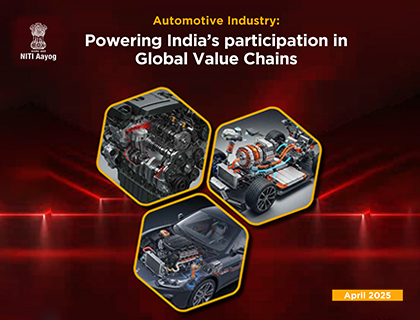
- 14 Apr 2025
In News:
NITI Aayog has recently released a comprehensive report titled “Automotive Industry: Powering India’s Participation in Global Value Chains”. It offers a roadmap to boost India’s role in the global automotive sector by enhancing competitiveness, production capacity, and export potential.
India’s Current Position
India is the world’s fourth-largest automobile producer, with nearly 6 million vehicles manufactured annually. However, its share in the global automotive component trade remains modest at 3%, primarily due to limited penetration in high-precision segments like engine components and drive transmission systems. The country exports auto components worth $20 billion, with major strengths in small cars and utility vehicles.
Global Landscape and Emerging Trends
Globally, 94 million vehicles were produced in 2023, with the automotive components market valued at $2 trillion, of which $700 billion was exported. The industry is witnessing rapid transformation through:
- Electric Vehicles (EVs): Rising demand, regulatory shifts, and battery innovations are reshaping manufacturing.
- Battery Ecosystems: Hubs in Europe and the US are altering global supply chains, focusing on lithium and cobalt.
- Industry 4.0: AI, IoT, robotics, and machine learning are revolutionizing automotive manufacturing through smart factories and digital supply chains.
Challenges to India’s GVC Participation
Despite a strong production base, India faces several hurdles in climbing the Global Value Chain (GVC):
- Low R&D spending and limited innovation
- High operational costs and infrastructural gaps
- Weak IP ecosystem and low brand visibility
- Inadequate skilling and moderate digital adoption
Strategic Interventions Proposed
NITI Aayog recommends a combination of fiscal and non-fiscal measures to address these gaps and strengthen India’s automotive ecosystem.
Fiscal Measures:
- Opex support to scale up production and infrastructure
- Skilling initiatives to build a trained workforce
- R&D incentives and IP transfer support for MSMEs
- Cluster development for shared R&D and testing facilities
Non-Fiscal Measures:
- Promoting Industry 4.0 adoption and quality manufacturing
- Ease of Doing Business reforms in labour, logistics, and regulations
- Global tie-ups and Free Trade Agreements (FTAs) to boost exports
Vision for 2030
By 2030, the report envisions:
- Auto component production to grow from ~$60 billion to $145 billion
- Exports to increase from $20 billion to $60 billion
- GVC share to rise from 3% to 8%
- Trade surplus of around $25 billion
- Employment generation of 2–2.5 million additional jobs
Index of Industrial Production (IIP)
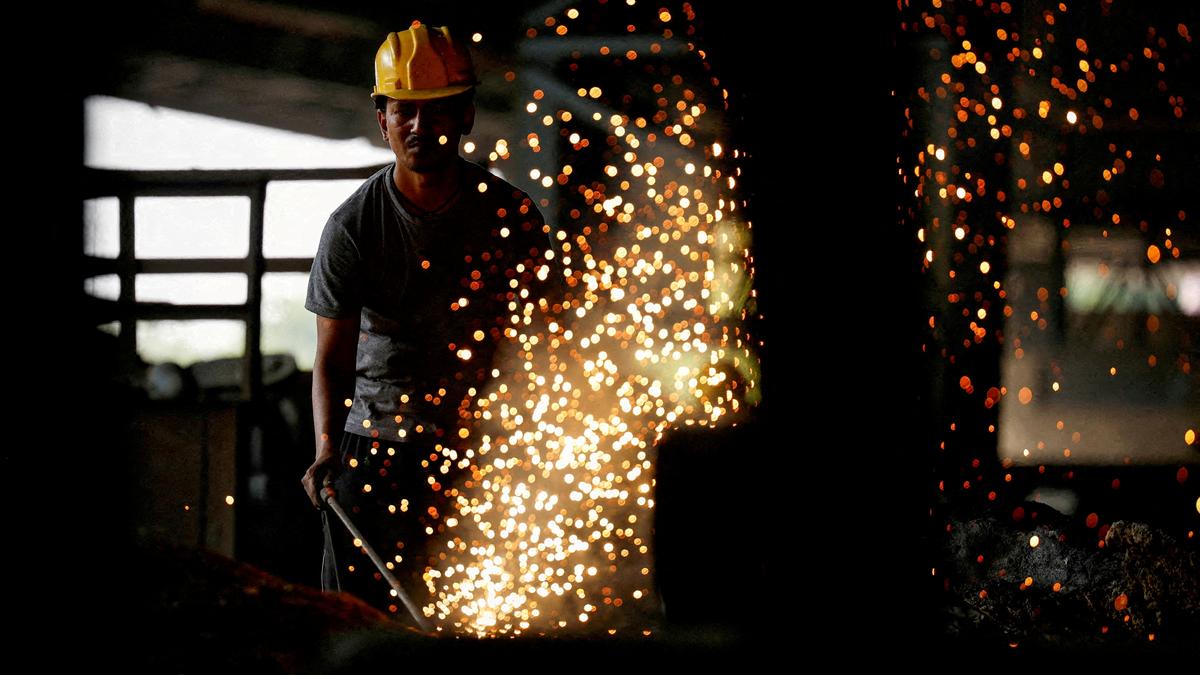
- 14 Apr 2025
In News:
The Index of Industrial Production (IIP), a key barometer of industrial activity in India, registered a growth of just 2.9% in February 2025, the slowest pace in six months. This was below market expectations of around 4% and reflects broad-based slowdown across sectors.
About the IIP
- Published by: Central Statistics Office (CSO), Ministry of Statistics and Programme Implementation (MoSPI)
- Base Year: 2011–12
- Purpose: Measures the short-term changes in volume of production in industrial sectors.
Sectoral Composition and Weights
Sector Weight in IIP No. of Items
Manufacturing 77.63% 809
Mining 14.37% 29
Electricity 7.99% 1
Sector-wise Performance (YoY in February 2025)
Sector Feb 2025 Growth Feb 2024 Growth
Mining 1.6% 8.1%
Manufacturing 2.9% 4.9%
Electricity 3.6% 7.6%
Use-Based Classification Performance
Category Feb 2025 Growth Feb 2024 Growth
Capital Goods 8.2% 1.7%
Intermediate Goods 1.5% —
Consumer Non-Durables -2.1% -3.2%
Observation: Capital goods were the only category to show robust growth. All other segments registered deceleration.
Eight Core Industries (Weight in IIP: 40.27%)
In decreasing order of weight:
- Refinery Products
- Electricity
- Steel
- Coal
- Crude Oil
- Natural Gas
- Cement
- Fertilisers
Key Concerns Highlighted
- Slowing growth across mining, manufacturing, and electricity sectors
- A high base effect from the previous year
- A decline in month-on-month output after five months of sustained growth
- Consumer non-durables in continued contraction, indicating weak rural/household demand
DRDO’s Long-Range Glide Bomb (LRGB) ‘Gaurav’
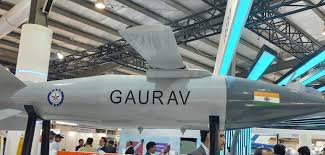
- 13 Apr 2025
In News:
The Defence Research and Development Organisation (DRDO) successfully conducted release trials of the indigenously developed Long-Range Glide Bomb (LRGB) ‘Gaurav’ from a Su-30 MKI aircraft.
About LRGB ‘Gaurav’
- Type: Air-launched, precision-guided munition.
- Purpose: Designed for accurate strikes on land targets from stand-off distances, i.e., beyond enemy air defence range.
- Indigenously developed by DRDO under the Ministry of Defence.
Key Features
- Range:
- Demonstrated precision strike at nearly 100 km.
- Operational range: 30–150 km.
- Variants by Weight:
- Gaurav (winged): 1,000 kg
- Gautham (non-winged): 550 kg
- Guidance Systems:
- Inertial Navigation System (INS)
- Satellite-based navigation (e.g., GPS/IRNSS)
- Digital control for enhanced accuracy
Significance
- Boosts India’s precision strike capability.
- Promotes self-reliance in defence technology under the Atmanirbhar Bharat initiative.
Related Concepts
Glide Bomb:
- A precision-guided munition that travels significant distances without powered propulsion.
- Uses aerodynamic lift to glide toward the target.
- Navigation via INS, GPS, or laser guidance.
Su-30 MKI Aircraft:
- A twin-engine, multirole fighter aircraft.
- Developed jointly by Sukhoi Design Bureau (Russia) and Hindustan Aeronautics Limited (HAL).
- Backbone of the Indian Air Force (IAF) combat fleet.
Kerala Researchers win International Grant for Hornbill Conservation
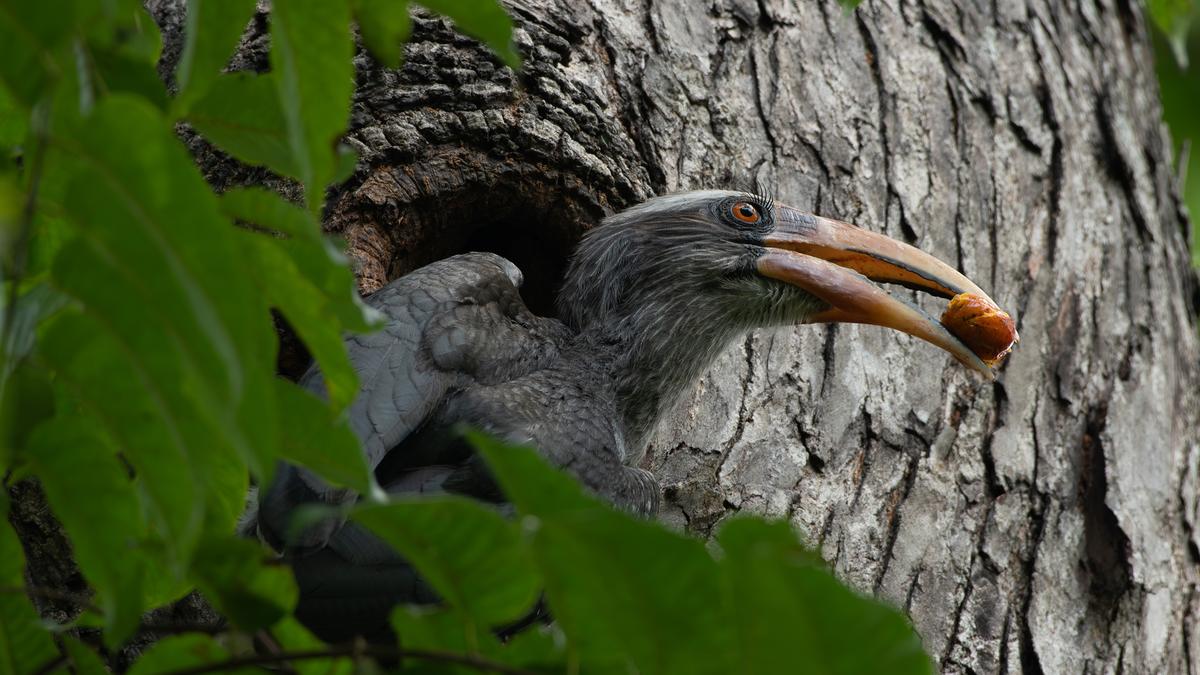
- 13 Apr 2025
In News:
A team of young researchers from Kerala has won the prestigious Future Conservationist Award by the Conservation Leadership Programme (CLP) for their community-driven project on conserving the Malabar Grey Hornbill in Wayanad.
About Malabar Grey Hornbill (Ocyceros griseus)
- Status: Vulnerable (IUCN Red List)
- Legal Protection: Schedule IV of the Wildlife Protection Act, 1972
- Endemic to: Western Ghatsand parts of the Nilgiris, Wayanad, and Anamalai Hills in Southern India.
- Habitat: Evergreen forests, plantations, and agricultural landscapes
- Ecological Importance: Cavity-nesting frugivore, plays a key role in seed dispersal
- Nesting Behavior:
- Nests in secondary cavities (e.g., old woodpecker hollows)
- Reuses the same nesting cavity for years
- Dependent on cavity-bearing trees, often outside protected areas
About the Future Conservationist Award (CLP)
- Awarded By:
- Fauna & Flora International
- BirdLife International
- Wildlife Conservation Society
- Purpose: Supports early-career conservationists with funding and mentorship
- Focus Areas: Field conservation, community engagement, biodiversity monitoring
Taiwan Strait
- 13 Apr 2025
In News:
China has recently launched aggressive military drills in the Taiwan Strait, heightening tensions in the region and drawing international concern over the stability of the Indo-Pacific.
About Taiwan Strait
- Location: Separates mainland China from the island of Taiwan.
- Connectivity: Links the South China Sea to the East China Sea.
- Width:
- Widest point: ~180 km
- Narrowest point: ~130 km
- Depth: Average of about 70 meters.
- Key Islands: Includes the Pescadores (Penghu) Islands, administered by Taiwan.
- Historical Name: Known as Formosa (meaning “Beautiful”) by Portuguese explorers in the 16th century.
Strategic and Economic Importance
- Maritime Trade Route:Nearly 40% of the world’s container ship traffic passes through the Taiwan Strait annually.
- Fisheries:One of China’s richest fishing zones, home to over 100 economically significant fish species.
Geopolitical and Historical Context
- Post-1949 Divide:Became a de facto boundary after the Nationalist government retreated to Taiwan post-Chinese Civil War.
- Taiwan Strait Crises:First Crisis (1954–55) and Second Crisis (1958) involved artillery attacks by the PRC on ROC-held islands.These crises prompted U.S. military support to Taiwan to prevent escalation.
Why it matters for India and the World
- Rising tensions in the Taiwan Strait could disrupt global trade and impact Indo-Pacific security.
- Strategic for India’s maritime interests and foreign policy under the Act East Policy and Indo-Pacific strategy.
M-CADWM Scheme
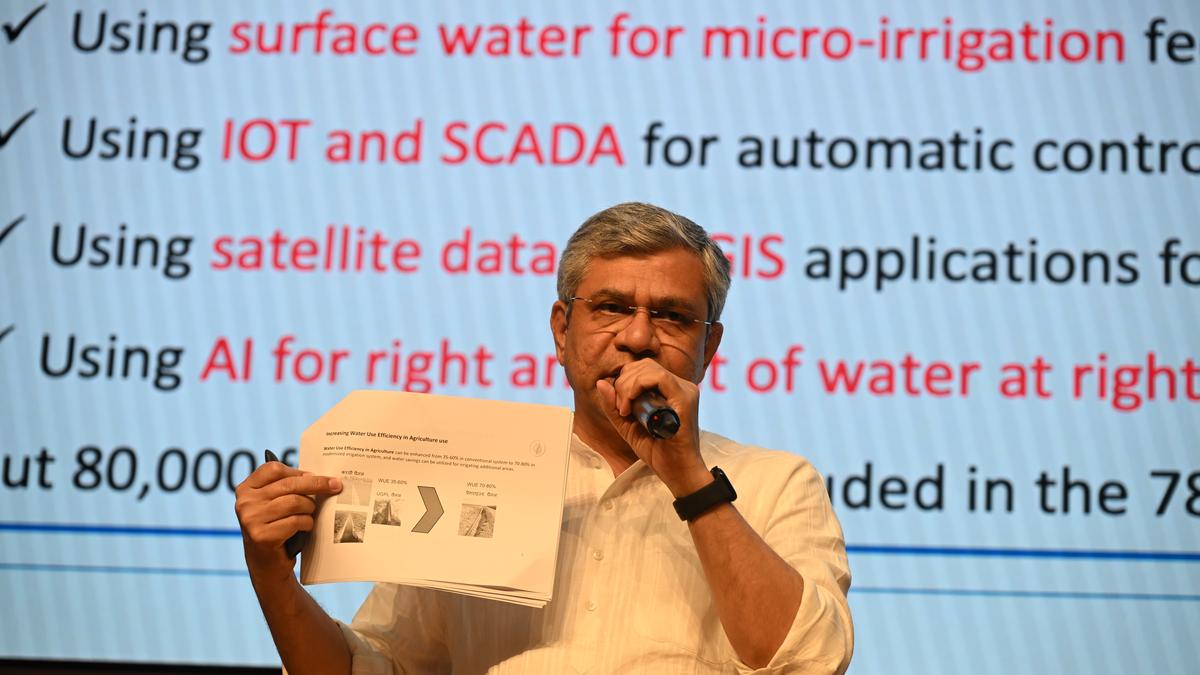
- 11 Apr 2025
In News:
The Union Cabinet has approved the Modernisation of Command Area Development and Water Management (M-CADWM) scheme as a sub-scheme of the Pradhan Mantri Krishi Sinchayee Yojana (PMKSY). The scheme will be implemented during 2025–26 with an initial outlay of ?1,600 crore.
Background
- PMKSY was launched in 2015-16 to expand the cultivable area under assured irrigation, improve on-farm water use efficiency, and enhance access to water at the farm level.
- The Command Area Development and Water Management (CAD&WM)programme was first initiated in 1974-75, and restructured in 2004. It has been implemented under PMKSY - Har Khet Ko Pani since 2015-16.
Objectives of M-CADWM
- Modernize the irrigation water supply network to ensure efficient delivery from existing canals or other sources to farming clusters.
- Enhance Water Use Efficiency (WUE) and promote sustainable agricultural practices.
Key Features
- Technological Integration:Adoption of SCADA (Supervisory Control and Data Acquisition) and Internet of Things (IoT) for real-time water accounting and monitoring.
- Infrastructure Development:Installation of underground pressurised piped irrigation systems up to 1 hectare per farm, supporting micro-irrigation from source to farm gate.
- Sustainable Water Management:
- Implementation of Irrigation Management Transfer (IMT) to Water User Societies (WUS).
- These societies will be supported for five years and linked with Farmer Producer Organisations (FPOs) and Primary Agricultural Cooperative Societies (PACS) to strengthen local management.
- Youth Engagement:The scheme aims to attract youth to agriculture by promoting the use of modern irrigation technologies and creating opportunities in agrarian entrepreneurship.
Components of CAD&WM (Under PMKSY)
- Structural Interventions:On-Farm Development (OFD) works, construction of field, intermediate and link drains.
- Non-Structural Interventions:One-time functional grants to registered Water Users’ Associations (WUAs), capacity building, demonstrations, and adaptive trials to promote efficient water use.
Expected Outcomes
- Improved irrigation efficiency and agricultural productivity.
- Enhanced water conservation and equity in water distribution.
- Strengthened community participation in irrigation management.
- Boost to rural employment and agriculture modernization.
Cafe Rista
- 11 Apr 2025
In News:
The Uttar Pradesh Police has taken a unique step to humanize policing and strengthen community engagement through the launch of Cafe Rista—a public-friendly café located within the Noida Police Commissionerate, Sector 108. This initiative is an example of citizen-centric policing aimed at improving the image of law enforcement and promoting positive interactions with the public.
Key Highlights:
- Launched by:The café is the brainchild of IPS officers Laxmi Singh and Babloo Kumar, with active public outreach by IPS Preeti Yadav, who brought attention to the initiative through a viral social media video.
- What is Cafe Rista?
It is a pastel-themed, aesthetically pleasing café designed to serve affordable, hygienic, and tasty meals to both civilians and police personnel. The ambiance is warm and welcoming, featuring quirky motivational quotes and a calming decor.
- Strategic Location:The café is situated close to the Family Dispute Resolution Clinic within the Commissionerate. This proximity serves a dual purpose:
- It offers a space of relaxation for families and individuals undergoing counselling or dispute mediation.
- It provides psychological respite for those visiting under stressful circumstances.
Objectives of the Initiative:
- Break Stereotypes:Challenge the conventional perception of the police as unapproachable or intimidating by creating an informal and friendly setting.
- Promote Informal Engagement:Encourage dialogue and trust-building between civilians and police personnel in a relaxed, non-threatening environment.
- Support Mental Well-Being:The café contributes to the morale and mental wellness of both the public and police officers, especially those on demanding duties.
- Welfare Policing Model:Aligns with the concept of "welfare policing", wherein the police function not only as enforcers of law but also as community caretakers.
- Public Outreach through Social Media:The initiative leverages platforms like Instagram and Twitter to showcase the human side of policing, creating transparency and relatability.
SEBI’s Operational Framework for ESG Debt Securities
- 07 Jun 2025
In News:
The Securities and Exchange Board of India (SEBI) has introduced a comprehensive operational framework for the issuance of Environmental, Social, and Governance (ESG) debt securities. This includes instruments such as social bonds, sustainability bonds, and sustainability-linked bonds, aiming to boost responsible financing in India.
Understanding ESG Debt Securities
Definition:
ESG debt securities are financial tools designed to raise capital specifically for projects that yield positive environmental, social, or governance (ESG) outcomes. These instruments are a key part of sustainable finance, with categories including:
- Social Bonds: Focused on projects with direct social impact (e.g., affordable housing, education).
- Sustainability Bonds: Target projects with both environmental and social objectives.
- Sustainability-Linked Bonds: Tied to specific ESG performance indicators or targets.
Salient Features:
- Funds raised must be used exclusively for eligible ESG-aligned projects.
- Bonds must be clearly labelled in line with the project's primary focus.
- Compliance with global ESG norms and standards is mandatory.
- Verification or certification by an independent third-party is required.
- The framework applies to both public and private debt offerings.
Highlights of SEBI’s Framework
1. Classification Guidelines: Issuers are required to categorize their bonds—green, social, or sustainability—based on the core objective of the projects being financed. This ensures transparent communication of the bond's intended impact.
2. Disclosure Norms:
- At the Issuance Stage: Offer documents must detail project eligibility, selection methodology, and a tentative allocation between financing new initiatives and refinancing existing ones.
- Post-Issuance: Issuers must provide annual updates on fund deployment and report impact metrics to demonstrate accountability and transparency.
3. Independent Assurance: Issuers must engage accredited third-party entities to validate the alignment of bonds with ESG principles, thereby enhancing investor confidence and market integrity.
4. Monitoring and Evaluation: There is an obligation for ongoing impact assessment. Issuers must ensure the projects funded effectively contribute to reducing environmental degradation or addressing social challenges.
5. Scope and Enforcement: The framework will come into effect from June 5, 2025, and is aligned with international ESG standards to facilitate greater inflow of sustainable and ethical investments.
Significance for India: This move marks a significant step in mainstreaming ESG finance in India. It aims to improve transparency, attract climate-conscious capital, and reinforce India’s commitment to sustainable development.
Waste Picker Enumeration App
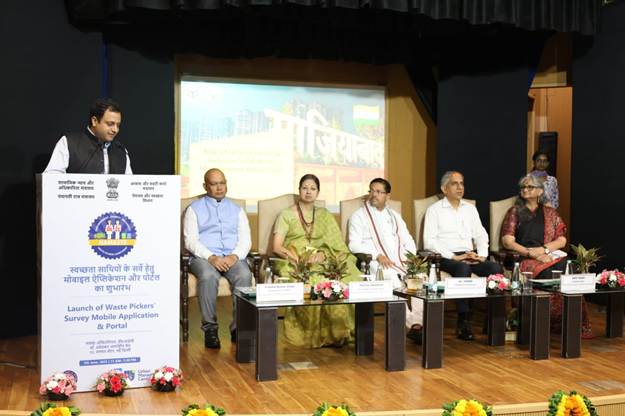
- 06 Jun 2025
In News:
On World Environment Day 2025, the Ministry of Social Justice and Empowerment (MoSJE) launched the Waste Picker Enumeration App under the NAMASTE Scheme, reaffirming the government’s commitment to environmental justice and the dignity of sanitation workers.
What is the NAMASTE Scheme?
- Full Form: National Action for Mechanised Sanitation Ecosystem
- Type: Central Sector Scheme (CSS)
- Launched: July 2023
- Nodal Ministry: Ministry of Social Justice and Empowerment (MoSJE)
- Partner Ministry: Ministry of Housing and Urban Affairs (MoHUA)
- Implementing Agency: National Safai Karamcharis Finance & Development Corporation (NSKFDC)
- Objective: To formalize and rehabilitate sanitation workers and integrate them into formal systems through skilling, social security, and mechanization of hazardous cleaning work.
- Inclusion of Waste Pickers (From June 2024): The NAMASTE Scheme expanded its scope in June 2024 to include Waste Pickers, recognizing their critical role in the circular economy and solid waste management.
Waste Picker Enumeration App – Key Highlights
- Purpose: Digital platform for profiling 2.5 lakh waste pickers across India.
- Recognition: Provides occupational photo ID cards and formal identity to waste pickers.
- Social Security:
- Health coverage under Ayushman Bharat–PM-JAY
- Distribution of PPE kits and seasonal safety gear
- Livelihood & Skilling:
- Skill development programs
- Capital subsidies for waste collection vehicles
- Empowerment:
- Strengthening of Waste Picker Collectives
- Management of 750 Dry Waste Collection Centres (DWCCs) in urban areas
Bar Council of India permits Foreign Lawyers in India
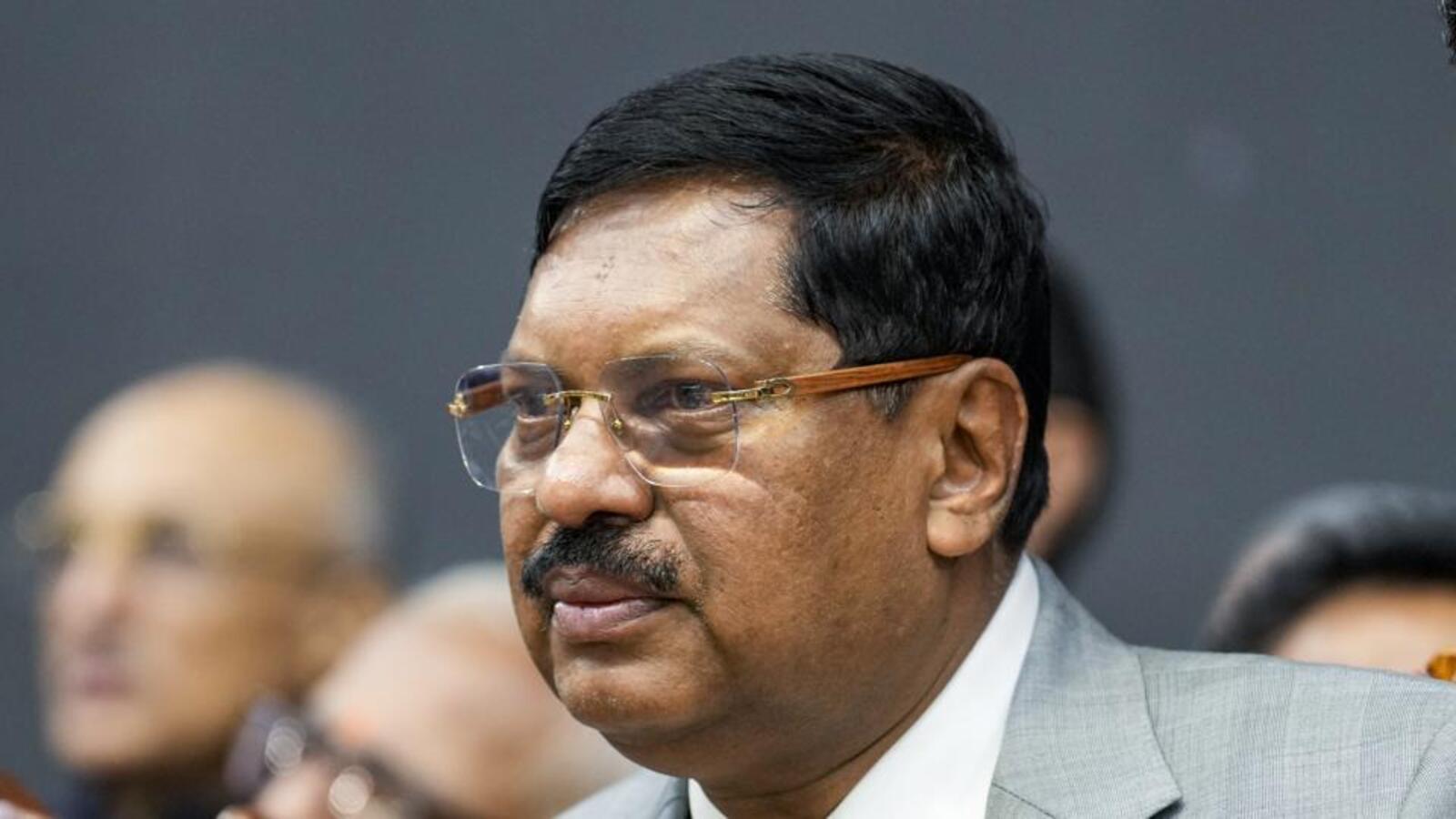
- 06 Jun 2025
In News:
Chief Justice of India (CJI) B.R. Gavai lauded the Bar Council of India (BCI) for amending rules to allow foreign legal professionals and law firms to advise on non-litigious matters in India.
Key Features of BCI’s Reform (2024 Update to 2022 Rules):
- Scope of Practice for Foreign Lawyers:
- Permitted: Advisory roles in foreign law, international law, and arbitration.
- Prohibited: Appearing in Indian courts/tribunals or advising on Indian law.
- Nature of Work Allowed: Only non-litigious activities.
Rationale Behind the Reform:
- Boosting Arbitration Quality:
- India ranks 5th globally in arbitration case volume (ICC 2024 Report).
- Reform aimed at enhancing arbitration standards via foreign expertise.
- Facilitating Legal Reciprocity:
- Enables Indian lawyers to access international legal markets.
- Promotes mutual recognition and cooperation with foreign bar associations.
- Supporting Institutional Arbitration:
- Benefits centres like:
- Mumbai Centre for International Arbitration (MCIA)
- Delhi International Arbitration Centre (DIAC)
- India International Arbitration Centre (IIAC)
- Benefits centres like:
- Filling Talent Gaps:
- Expertise needed in fields such as:
- Climate litigation
- Technology and data law
- Cross-border commercial arbitration
- Expertise needed in fields such as:
Challenges and Concerns:
- Market Displacement Fears: Indian lawyers worry about reduced share in arbitration and consultancy services.
- Reciprocity Barriers: Unequal treatment in countries with restrictive legal entry norms.
- Uneven Playing Field: Foreign firms possess larger capital, advanced tech, and international clientele.
- Regulatory Oversight Needed: BCI must ensure strict compliance to maintain sovereignty of Indian legal framework.
Significance of the Reform:
- Positioning India as an Arbitration Hub: Enhances India's global legal profile, especially in infrastructure and trade.
- Strengthening Indo-UK Legal Cooperation: Reform highlighted during Indo-UK Arbitration Conference, deepening bilateral ties.
- Modernizing Legal Sector: Brings global legal best practices and innovation to India.
- Upholding Indian Legal Integrity: Complies with the Advocates Act, 1961 – no foreign practice in Indian law.
- Opportunities for Indian Lawyers Abroad: Reciprocity clause allows dual practice in India and foreign jurisdictions.
International Institute of Administrative Sciences (IIAS)
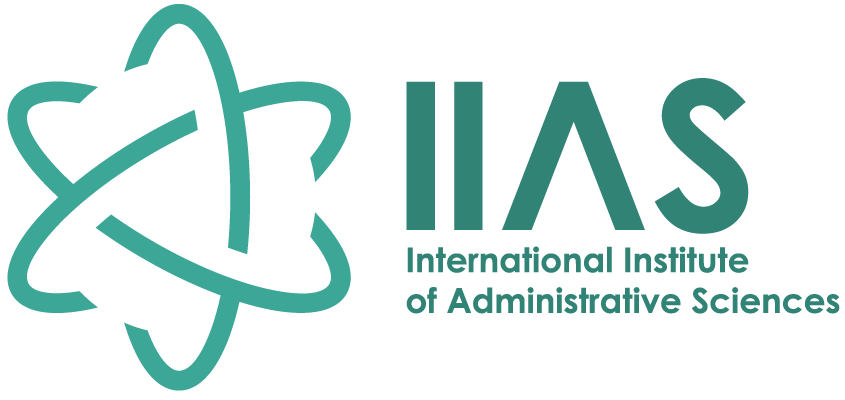
- 05 Jun 2025
In News:
India has secured the Presidency of the International Institute of Administrative Sciences (IIAS) for the term 2025–2028, marking a historic first for the country since becoming a member in 1998. The victory affirms India’s growing influence in the field of global public administration.
About IIAS
- Established: 1930
- Headquarters: Brussels, Belgium
- Nature: A global federation of 31 Member States, 20 National Sections, and 15 Academic Research Centres, dedicated to collaborative scientific research in public administration.
- Core Objectives:
- Promote collaboration on public governance solutions.
- Accredit academic and professional training programs in public management.
- Disseminate research and best practices in administrative sciences.
Although not formally affiliated with the United Nations, IIAS actively participates in UN mechanisms like the Committee of Experts on Public Administration (CEPA) and the UN Public Administration Network (UNPAN).
India’s Role and Election to Presidency
- India has been a Member State of IIAS since 1998, represented by the Department of Administrative Reforms and Public Grievances (DARPG).
- For the 2025–2028 term, Prime Minister Narendra Modi nominated V. Srinivas, Secretary, DARPG, as India's candidate in November 2024.
- Election Process:
- Hearings were held at Bharat Mandapam, New Delhi in February 2025.
- Four countries—India, South Africa, Austria, and Bahrain—submitted nominations.
- The final vote on June 3, 2025, saw India and Austria advance to the final round.
- Out of 141 votes, India secured 87 votes (61.7%), while Austria received 54 votes (38.3%).
Significance for India
- This marks India’s first Presidency of IIAS.
- The victory enhances India's position in global governance and showcases its administrative capabilities on an international platform.
- It also aligns with India’s focus on reforming and modernizing public administration through digital governance and institutional capacity-building.
Seva Se Seekhen Campaign
- 04 Jun 2025
In News:
The Government of India has launched the ‘Seva Se Seekhen’ (Learn by Doing) campaign to empower youth through hands-on experience at Jan AushadhiKendras (JAKs). Starting from June 1, 2025, this initiative aims to blend experiential learning with public health outreach.
About the Campaign:
- Launched in: 2025
- Nodal Ministries:
- Ministry of Youth Affairs and Sports
- Department of Pharmaceuticals, Ministry of Chemicals and Fertilizers
- Framework:Part of the National Youth Development Framework, aligning youth engagement with grassroots service.
Objectives:
- Provide experiential learning opportunities in real-world public service settings.
- Raise awareness about generic medicines and enhance health literacy.
- Equip youth with technical and soft skills in areas such as inventory, logistics, customer service, and communication.
- Foster values such as discipline, empathy, and civic responsibility among the youth.
Key Features:
- Nationwide Implementation:
- Five youth volunteers per district will be placed across five Jan AushadhiKendras.
- Covers all states and Union Territories.
- Volunteer Sources:Participants are selected from:
- MY Bharat
- National Service Scheme (NSS)
- Pharmacy colleges
- Other youth-focused platforms
- Duration:15-day structured engagement, including guided tasks and learning outcomes.
Roles and Responsibilities of Volunteers:
- Support daily functioning and customer services at JAKs.
- Assist in medicine inventory and logistics management.
- Promote generic medicine awareness among the public.
- Participate in community health outreach activities.
- Observe backend processes like supply chains and stock maintenance.
Key Benefits for Youth:
- Practical exposure to pharmacy operations and public health service.
- Skills in record-keeping, inventory handling, and basic operations.
- Development of employability and customer interaction skills.
- Insights into affordable healthcare delivery under schemes like Pradhan Mantri Bhartiya JanaushadhiPariyojana (PMBJP).
Operation Spider’s Web
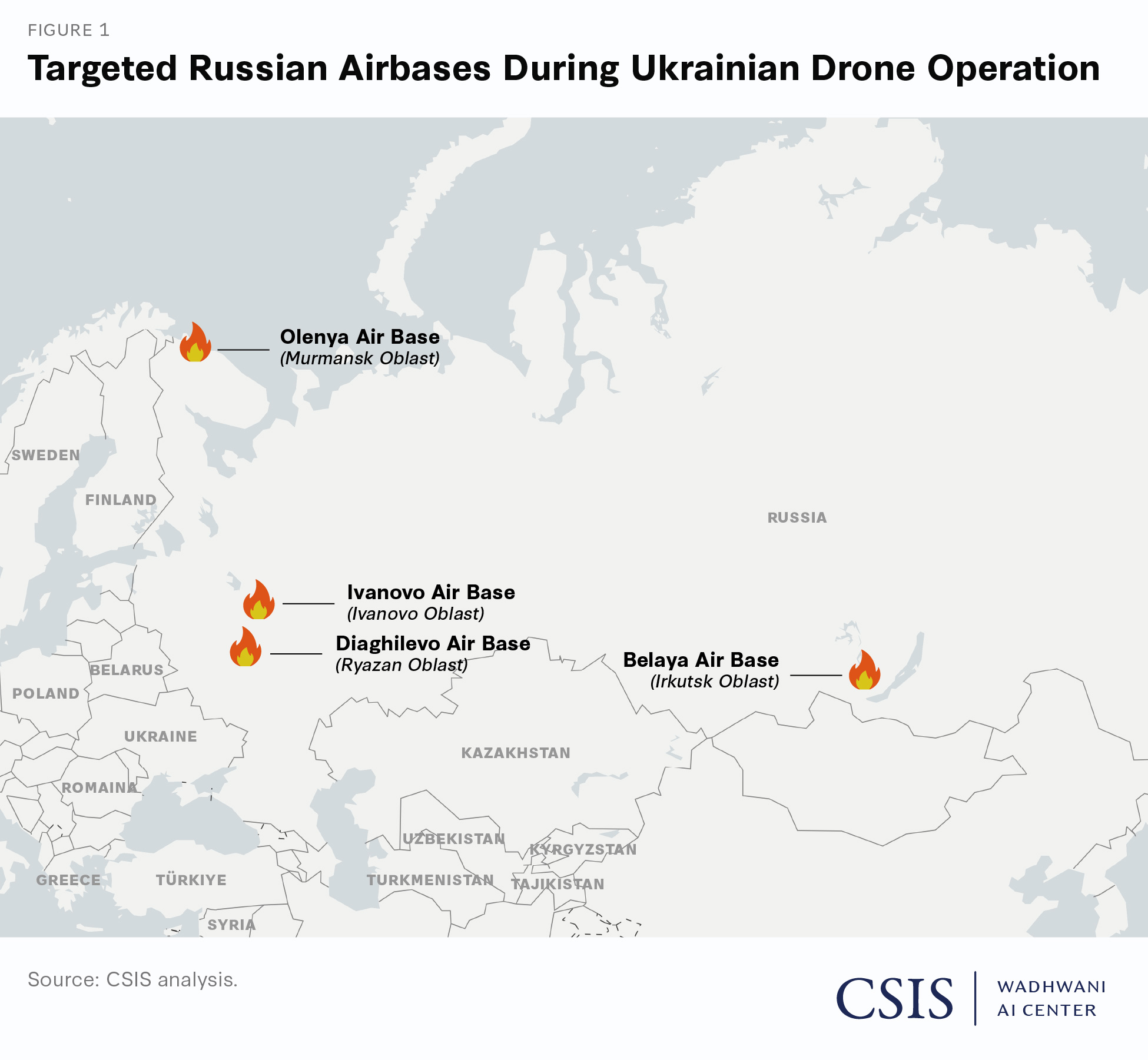
- 04 Jun 2025
In News:
On June 1, 2025, Ukraine executed Operation Spider’s Web, its most extensive drone-based military strike against Russia to date. The attack destroyed an estimated $7 billion worth of Russian aircraft, including approximately 34% of Russia’s strategic bomber fleet. The operation occurred just before the second round of peace talks between the two countries in Istanbul.
Key Highlights:
- Nature of Operation:A high-precision, long-range drone strike aimed at crippling Russia’s strategic air power, especially bombers capable of launching cruise missiles and nuclear warheads.
- Planning and Execution:
- Orchestrated over 18 months by the Security Service of Ukraine (SBU).
- 117 explosive-laden drones were deployed simultaneously.
- Drones were concealed in wooden sheds on civilian trucks, enabling stealth transport across vast distances.
- Once positioned, they were remotely launched, surprising Russian air defences.
- Airbases Targeted:The operation struck five major Russian airbases:
- Belaya (Irkutsk)
- Dyagilevo (Ryazan)
- Ivanovo Severny
- Olenya (Murmansk)
- Ukrainka
- Geographic Reach:Some drone targets were over 4,300 km from the front lines, marking the deepest Ukrainian strike inside Russian territory.
Strategic and Political Context:
- The drone strike came hours after Russia's Iskander-M missile attack on a Ukrainian military training centre in Dnipropetrovsk, which killed 12 soldiers and injured over 60.
- Ukrainian Major General MykhailoDrapatyi resigned, accepting personal responsibility for the missile casualties.
- Ukrainian President Volodymyr Zelenskyy hailed Operation Spider’s Web as a “brilliant success,” showcasing Ukraine’s evolving tactical capabilities.
- The operation served to strengthen Ukraine’s negotiating position ahead of the June 2 Istanbul peace talks.
Peace Negotiation Backdrop:
- The Istanbul talks followed an earlier round that resulted in the largest prisoner exchange since the start of the war but lacked a concrete ceasefire plan.
- Ukraine is expected to propose:
- A 30-day ceasefire
- Mutual prisoner release
- A high-level summit between Presidents Zelenskyy and Putin
- However, Russia has reportedly rejected all ceasefire proposals and has not submitted a formal response.
Wider Conflict Situation:
- As of late May 2025, Ukraine has lost around 18% of its territory to Russian control.
- Meanwhile, Russian forces continue their advance, recently capturing a village in Ukraine’s northern Sumy region.
BharatGen
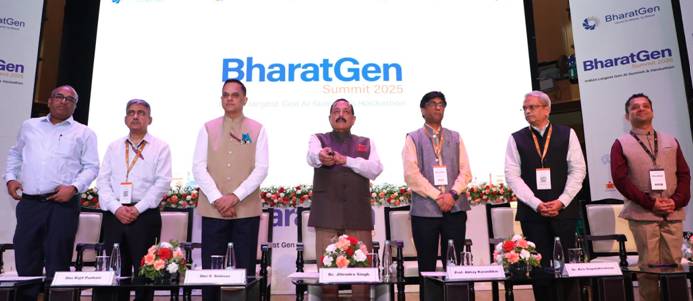
- 04 Jun 2025
In News:
Union Minister Dr. Jitendra Singh launched BharatGen, India’s first indigenously developed, government-funded Multimodal Large Language Model (LLM) at the BharatGen Summit 2025, marking a significant step in India’s AI innovation landscape.
About BharatGen:
- BharatGen is a Multimodal LLM designed to support 22 Indian languages and various content formats—text, speech, and image.
- Developed under the National Mission on Interdisciplinary Cyber-Physical Systems (NM-ICPS) and implemented by the TIH Foundation for IoT and IoE at IIT Bombay.
- Supported by the Department of Science and Technology (DST), it is a collaborative effort involving premier academic institutions, researchers, and innovators.
Key Features:
- Multilingual and multimodal capabilities (text, voice, image inputs).
- Open-source platform to encourage accessible innovation.
- Trained on Indian datasets to reflect Indian linguistic and cultural diversity.
- Integrated applications across critical sectors like healthcare, education, governance, and agriculture.
- Aims to deliver region-specific AI solutions rooted in Indian values and societal contexts.
Implementation Mechanism:
- Executed through 25 Technology Innovation Hubs (TIHs) across India.
- Four of these TIHs have been upgraded to Technology Translational Research Parks (TTRPs) for real-world deployment.
- Guided by four pillars: technology development, entrepreneurship, human resource development, and international collaboration.
ULLAS – Nav Bharat SaakshartaKaryakram and Goa’s Milestone in Literacy
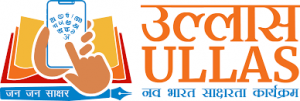
- 02 Jun 2025
In News:
Recently, Goa became the second state in India to achieve full functional literacy under the ULLAS – Nav Bharat SaakshartaKaryakram (New India Literacy Programme), marking a key achievement in India’s goal of attaining full literacy by 2030, as envisioned in the National Education Policy (NEP) 2020.
About ULLAS
- ULLAS stands for Understanding Lifelong Learning for All in Society.
- It is a centrally sponsored scheme implemented by the Ministry of Education from 2022 to 2027.
- Target Group: Adults aged 15 years and above who missed formal schooling.
- Alignment: The scheme is aligned with NEP 2020, emphasizing inclusive and equitable education.
- Implementation Basis: The programme is built on the spirit of volunteerism and Kartavya Bodh (sense of duty).
Five Components of the ULLAS Scheme:
- Foundational Literacy and Numeracy
- Critical Life Skills
- Basic Education
- Vocational Skills Development
- Continuing Education
Digital Outreach
- The ULLAS mobile app facilitates registration of learners and volunteers.
- It also provides access to learning resources through the DIKSHA portal of NCERT.
- So far, over 2.40 crore learners and 41 lakh volunteer teachers have been registered on the app.
- Over 1.77 crore learners have taken the Foundational Literacy and Numeracy Assessment Test (FLNAT).
Goa Achieves Full Literacy
- Declared Fully Literate: On May 30, 2025, during the 39th Goa Statehood Day celebrations at Panaji, Goa was declared fully literate.
- Reported Literacy Rate: As per PLFS 2023–24, Goa had a literacy rate of 93.60%, among the highest in India.
- State Survey Update: A state-led survey confirmed that Goa had crossed the 95% benchmark, qualifying it as fully literate under ULLAS.
Key Factors Behind Goa’s Success
- Adopted a Whole-of-Government approach, involving departments such as:
- Directorate of Panchayats
- Municipal Administration
- Social Welfare
- Planning & Statistics
- Women & Child Development
- Engaged SwayampurnaMitras for grassroots awareness and learning support.
- Played an active role in certification and inclusion of learners into the literacy programme.
- Strong collaboration between SCERT, local administration, school heads, volunteers, and field workers ensured last-mile delivery.
Significance for India
- Goa's achievement underscores the effectiveness of decentralized, people-driven literacy campaigns.
- Demonstrates the potential of tech-enabled platforms, volunteerism, and inter-departmental coordination.
- Sets a model for other states in achieving India’s literacy goal by 2030.
- Reinforces the broader national vision of “Jan-Jan Saakshar” and a Viksit Bharat.
Kawal Tiger Reserve and KumramBheem Conservation Reserve
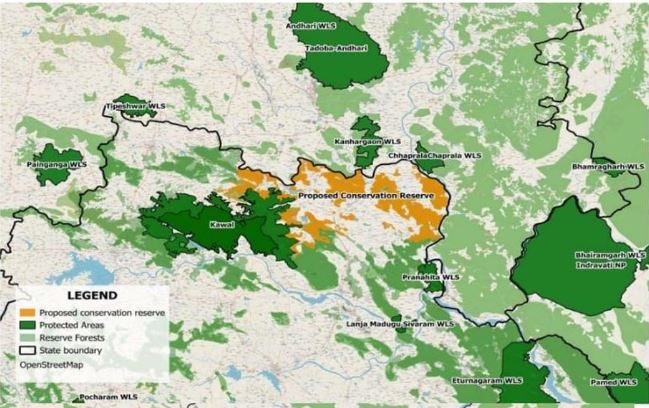
- 02 Jun 2025
In News:
In a recent development, the Telangana government has designated the tiger corridor connecting the Kawal Tiger Reserve (Telangana) with the Tadoba-Andhari Tiger Reserve (Maharashtra) as the KumramBheem Conservation Reserve, under Section 36(A) of the Wildlife Protection Act, 1972. This move is aimed at preserving critical wildlife corridors in the Central Indian Landscape.
Kawal Tiger Reserve:
- Location: Situated in Telangana, along the Godavari River, forming part of the Deccan Peninsula – Central Highlands.
- Biogeographic Zone: Lies at the southern tip of the Central Indian Tiger Landscape.
- Connectivity: Links with Tadoba-Andhari (Maharashtra), Indravati (Chhattisgarh), and other reserves like Tipeshwar, Chaprala, and Kanhargaon.
- Vegetation Type: Southern Tropical Dry Deciduous Forests.
- Flora: Dominated by teak, bamboo, and species like Anogeissuslatifolia, Terminalia arjuna, Boswellia serrata, etc.
- Fauna: Hosts tiger, leopard, nilgai, chinkara, sambar, blackbuck, wild dog, wolf, and jungle cat.
KumramBheem Conservation Reserve: Newly Notified Area
- Legal Basis: Declared under Section 36(A), Wildlife Protection Act, 1972, which allows states to notify government-owned land adjacent to or connecting protected areas as conservation reserves.
- Total Area: 1,492.88 sq km (149,288.48 hectares)
- District &Mandals Covered: Spread across KumramBheemAsifabad district, covering parts of Kerameri, Wankidi, Asifabad, Sirpur, Koutala, Bejjur, Kagaznagar, Rebbana, Dahegaon, and Tiryanimandals.
- Forest Blocks Included: 78 blocks including Garlapet, Ada, Manikgarh East & West, Danora, Gudem, Bejjur, Kadamba, and Girali.
Ecological Significance
- Tiger Movement: Over the last decade, more than 45 unique tigers (mostly transient) have been documented in this corridor through camera trapping and surveys.
- Breeding Evidence: Since 2015, 17 tiger cubs born from 3 tigresses have been recorded. The 2022 Tiger Census confirmed 4 adult tigers and 3 cubs in the area.
- Leopard Presence: 8 leopards were recorded during the All India Leopard Estimation, 2022.
- Other Carnivores: Includes sloth bear, hyena, wild dog, wolf, honey badger, and jungle cat.
- Herbivore Diversity: Rich prey base such as gaur, sambar, nilgai, chital, muntjac, four-horned antelope, and Indian gazelle.
- Avifauna: Home to 240+ bird species, including rare species like the Malabar Pied Hornbill and Long-billed Vulture, the latter using the reserve as a nesting site.
- Elephant Movement: Occasional elephant presence has also been reported.
Governance
A Conservation Reserve Management Committee has been established. Members include:
- District Forest Officer (DFO) of KumramBheemAsifabad (Convenor)
- Sarpanches of local panchayats (e.g., Karji, Motlaguda, Murliguda)
- Representatives from NGOs like Hyderabad Tiger Conservation Society, WWF-India, and Wildlife Conservation Trust
- Officials from Veterinary, Agriculture, and Forest Divisions
DHRUVA(Digital Hub for Reference and Unique Virtual Address)
- 01 Jun 2025
In News:
In May 2025, the Department of Posts, under the Ministry of Communications, released the policy framework for DHRUVA (Digital Hub for Reference and Unique Virtual Address) — a key initiative aimed at creating a standardized, geo-coded digital address infrastructure across India.
What is DHRUVA?
DHRUVA is a Digital Public Infrastructure (DPI) initiative that conceptualizes Address-as-a-Service (AaaS) — a secure, consent-based, and interoperable system for managing and sharing address data. It builds upon the earlier DIGIPIN (Digital Postal Index Number) system, which created a national-level, geo-tagged addressing grid for improved governance and service delivery.
Objectives of DHRUVA
- Transform address information into a digital public good.
- Enable secure, standardized, and interoperable access to address data across sectors.
- Empower users with control and consent over how their address data is shared.
- Promote public-private collaboration in areas like logistics, e-governance, and financial inclusion.
Key Features
- DIGIPIN Backbone: Utilizes the Digital Postal Index Number system, allowing logical and directional naming of addresses with precise geolocation.
- Address-as-a-Service (AaaS): Facilitates seamless address validation, authentication, and sharing across government and private platforms.
- User Autonomy: Individuals can manage and consent to how their address data is used, ensuring privacy and user-centric governance.
- Open & Inclusive Access: The infrastructure is freely accessible, promoting innovation and broad-based adoption.
- Consent Framework: Address data sharing will be user-approved, ensuring a secure and trusted digital ecosystem.
Significance of DHRUVA
- Geospatial Governance: Enhances planning, disaster management, and delivery of public services through precise address mapping.
- Improved Logistics & E-Commerce: Enables more efficient last-mile delivery, reducing ambiguity in address identification.
- Financial Inclusion: Facilitates smoother KYC, subsidy disbursement, and service access in rural and underserved areas.
- Ease of Living & Digital India: Aligns with broader national goals by supporting smart governance and digital transformation.
- Public-Private Synergy: Encourages co-creation of solutions by government bodies and private enterprises based on shared, trusted digital address data.
Zangezur Corridor
- 01 Jun 2025
In News:
The Zangezur Corridor gained renewed attention following the visit of Armenia’s Security Council Secretary to New Delhi, where he held discussions with India’s National Security Advisor, AjitDoval.
What is the Zangezur Corridor?
The Zangezur Corridor is a proposed transport and transit route that aims to connect mainland Azerbaijan with its exclave, the Nakhchivan Autonomous Republic, by bypassing Armenia’s Syunik Province. The corridor passes through the Zangezur region, which is currently part of southern Armenia and has been a historically disputed territory since World War I.
Geographical and Strategic Linkages
- On the Azerbaijani side, the corridor integrates with the Horadiz-Agbend highway and railway infrastructure.
- On the Turkish side, it connects with the Nakhchivan-Igdir-Kars railway and highway, creating a direct land route from Azerbaijan to Turkey, and further west to Anatolia and Europe.
- The corridor, therefore, would serve as a critical land bridge across the South Caucasus, improving connectivity between Europe and Asia.
Economic and Strategic Significance
- The corridor is envisioned to:
- Boost regional trade and connectivity across Turkey, Azerbaijan, Iran, Russia, and Central Asia.
- Reduce transportation time and costs between Azerbaijan and Nakhchivan.
- Improve logistics infrastructure and increase supply chain efficiency across the region.
- It has implications for wider Eurasian integration, especially as global trade seeks alternatives to vulnerable chokepoints like the Suez Canal.
India’s Strategic Interest
India's engagement with the Zangezur Corridor gained attention after a meeting between India’s National Security Advisor and Armenia’s Security Council Secretary in New Delhi.
India’s interests in the region include:
- Chabahar Port in Iran: India’s investment here aims to create a secure route to Central Asia and Europe.
- Engagement with Armenia: India has been increasing strategic and defence cooperation with Armenia.
- Alternative Connectivity: The Zangezur Corridor challenges India’s north-south connectivity vision, as it could marginalize the Chabahar route if dominated by Turkish-Azerbaijani interests.
- Geopolitical Balance: India's presence helps counterbalance Turkish-Pakistani influence in the South Caucasus.
World’s First 3D-Printed Train Station unveiled in Japan
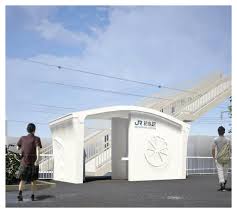
- 10 Apr 2025
In News:
Japan’s West Japan Railway Company has unveiled the world’s first 3D-printed train station — Hatsushima Station in Arida city. Notably, the station was constructed in less than six hours, highlighting a major advancement in construction technology.
Understanding 3D Printing (Additive Manufacturing)
What is 3D Printing?
3D Printing, or Additive Manufacturing, is a process of creating three-dimensional objects by layering material based on a digital design. Unlike traditional (subtractive) manufacturing, which removes material, this method adds material layer by layer, ensuring reduced waste and the ability to produce complex geometries.
How 3D Printing Works:
- Design Phase: A 3D digital model is created using CAD (Computer-Aided Design) software and saved in formats like .STL or .OBJ.
- Slicing: The model is sliced into horizontal layers using specialized software.
- Printing: The printer deposits material layer-by-layer according to the sliced file. Each layer solidifies to form the final shape.
- Post-Processing: The object is finished through processes such as curing, sanding, or painting.
Major 3D Printing Technologies:
- Fused Deposition Modelling (FDM): Uses melted thermoplastic filaments to build objects layer-by-layer.
- Selective Laser Sintering (SLS): Uses lasers to fuse powdered plastics or metals into solid forms.
- Direct Metal Laser Sintering (DMLS): Employs a laser to fuse metal powders — widely used in aerospace and medical sectors.
- Material Jetting: Deposits photopolymer droplets, cured with UV light — ideal for high-precision and colorful prototypes.
Limitations of 3D Printing:
- Material Restrictions: Only specific plastics, metals, and composites are compatible with given printers.
- Size Constraints: Limited build volume necessitates assembling larger items from smaller parts.
- Structural Weakness: Objects may have weak joints due to the layered structure, reducing suitability for high-stress uses.
- IP Challenges: Digital design files can be easily shared, posing risks of counterfeiting and intellectual property theft.
De-Extinction
- 09 Apr 2025
In News:
A US biotech company, Colossal Biosciences, claims to have genetically engineered three grey wolf pups to carry traits of the extinct dire wolf, calling it a de-extinction.
What is De-Extinction?
De-extinction is the process of reviving extinct species using advanced biotechnological methods such as:
- Gene editing (e.g., CRISPR-Cas9),
- Cloning (e.g., somatic cell nuclear transfer),
- Ancient DNA sequencing and genome reconstruction,
- Synthetic biology to reintroduce key traits of extinct organisms.
Colossal Biosciences and the Dire Wolf Project
In late 2024, a U.S.-based biotechnology firm, Colossal Biosciences, announced the birth of three genetically engineered wolf pups—Romulus, Remus, and Khaleesi—claimed to be the world’s first successful case of "functional de-extinction."
About the Dire Wolf
- Scientific name: Aenocyon dirus
- Habitat: Grasslands and forests of North America during the Pleistocene Epoch
- Extinction: ~12,500–13,000 years ago
- Characteristics: 25% larger than modern grey wolves; strong jaws to hunt megafauna like bison and horses; light-colored dense fur; social, pack-hunting predators.
Scientific Process Involved
- DNA Extraction: Ancient DNA was recovered from dire wolf fossils (13,000 to 72,000 years old).
- Genome Reconstruction: Sequencing and comparative analysis showed ~99.5% similarity between dire wolves and modern grey wolves.
- Gene Editing: Scientists edited 20 genes in grey wolves to replicate dire wolf traits like:
- White, thick fur
- Increased body mass
- Enhanced musculature and coat pattern
- Cloning: Modified DNA was used to create embryos via somatic cell nuclear transfer.
- Surrogacy: Embryos were implanted in large domestic dogs. Of several attempts, three pups survived.
Scientific and Ethical Concerns
- Experts argue these are not true dire wolves but genetically edited grey wolves with some dire wolf-like traits.
- Critics highlight the absence of peer-reviewed publication, limited understanding of epigenetic and behavioral factors, and the artificial environment in which the pups are raised.
- Colossal terms the process "functional de-extinction", meaning re-creating genetically and ecologically similar organisms, not exact replicas.
Ecological and Conservation Relevance
- Colossal claims the technology could help endangered species like the red wolf (native to the southeastern U.S.), threatened by habitat loss and hybridization with coyotes.
- Four clones of red wolf–coyote hybrids have been produced with potential use in restoring genetic diversity.
- The company aims to democratize conservation biotechnology, pledging to share tools with global conservationists and working with Native American communities.
Contemporary Debates
- Over 60 environmental groups have protested proposed U.S. legislation to delist grey wolves from the Endangered Species Act, warning of ecological consequences.
- Scientists urge caution, stressing that true resurrection of extinct species requires more than gene editing, as behavior, evolutionary context, and environmental adaptation cannot be synthetically replicated.
Food and Agriculture Organization (FAO)
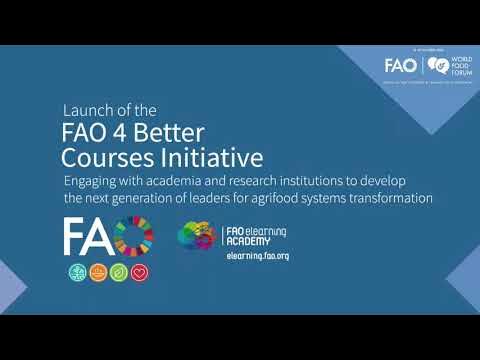
- 08 Apr 2025
In News:
The Food and Agriculture Organization (FAO) has launched two major global initiatives to advance inclusive and sustainable agrifood systems:
- “Four Betters Courses” Initiative – To revolutionize agrifood systems education
- “Commit to Grow Equality” Initiative – To bridge the gender gap in agrifood sectors
1. Four Betters Courses Initiative
- Launched: October 2024 during the World Food Forum
- Objective: To integrate FAO’s expertise into global agrifood systems education through partnerships with universities and academic networks.
- Alignment: Anchored in the FAO Strategic Framework 2022–2031
Core Philosophy – The “Four Betters” Approach:
- Better Production – Promote efficient, inclusive, and resilient food systems
- Better Nutrition – Ensure access to safe, nutritious, and affordable diets
- Better Environment – Address climate change and protect ecosystems
- Better Life – Improve rural livelihoods and reduce inequalities
- Delivery Platform: Implemented through the FAO eLearning Academy, which provides over 600 multilingual, certified courses.
2. Commit to Grow Equality (CGE) Initiative
- Launched: 2024 on the platform of the United Nations General Assembly (UNGA)
- Objective: To narrow the gender gap in agrifood systems and enhance women’s empowerment, especially in rural areas.
Key Highlights:
- Aims to benefit over 54 million women worldwide
- Mobilizes $1 billion in investments toward gender-responsive agrifood initiatives
- Provides strategic tools for tracking gender equality outcomes in public and private sectors
- Promotes gender-aligned national agricultural policies
- Facilitates evidence-based policymaking and fosters collaboration across governments, NGOs, and the private sector
National Florence Nightingale Award 2025
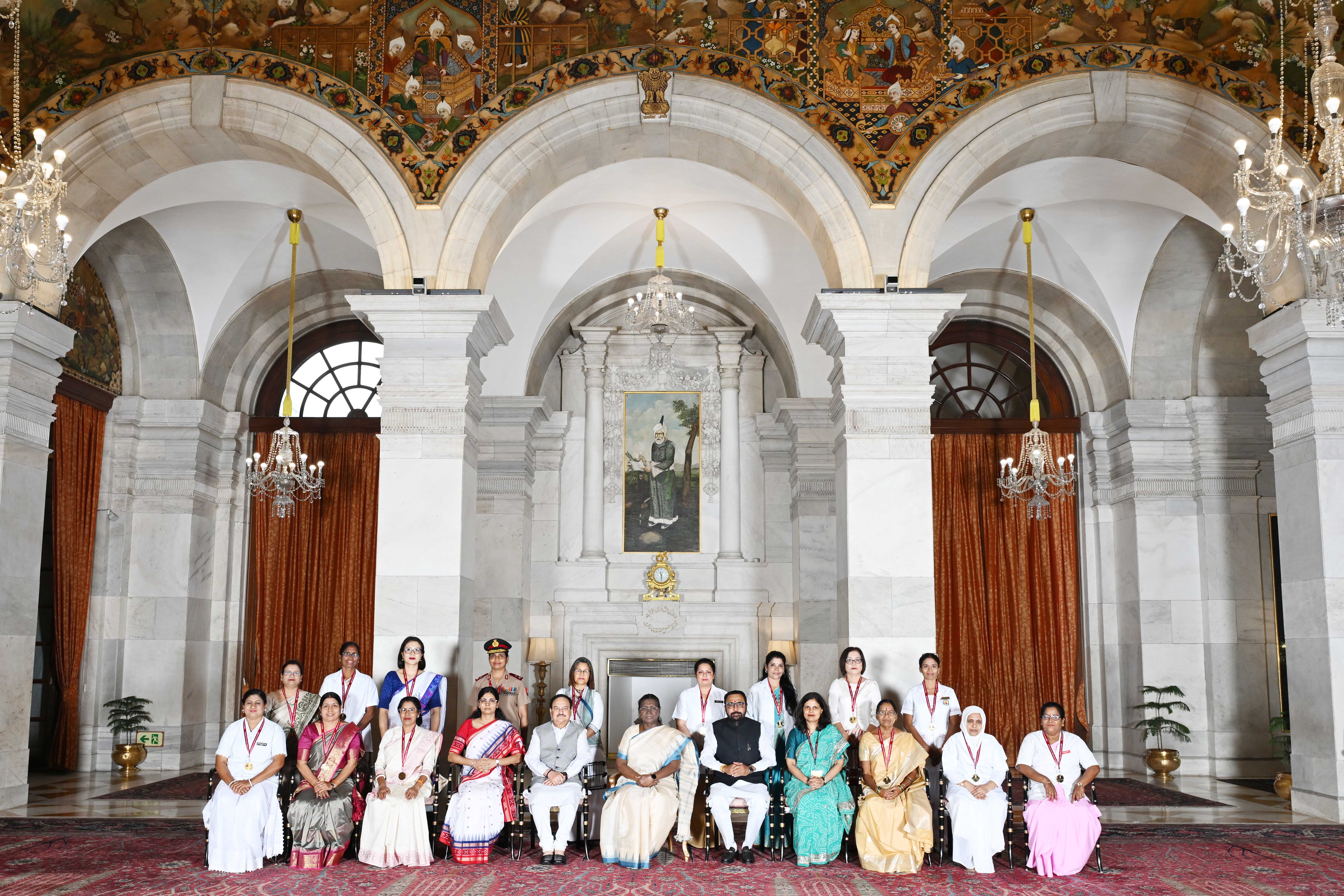
- 31 May 2025
In News:
The President of India recently conferred the National Florence Nightingale Awards 2025 to exemplary nursing professionals in a formal ceremony held at Rashtrapati Bhavan.
About the National Florence Nightingale Awards
- Established: 1973
- Administered by: Ministry of Health and Family Welfare, Government of India
- Purpose: To honour exceptional contributions of nursing personnel across India in recognition of their meritorious service to society.
The award is open to nurses working in government, private, and voluntary healthcare settings, including hospitals, community health centres, educational institutions, and administrative roles.
Award Components
- Certificate of Merit
- Cash Prize: ?1,00,000
- Medal of Honour
About Florence Nightingale
- Florence Nightingale (1820–1910) was a pioneering English nurse, social reformer, and statistician, widely considered the founder of modern nursing.
- She gained recognition during the Crimean War for organizing the care of wounded soldiers in Constantinople (now Istanbul).
She also revolutionized nursing education by establishing the Nightingale School of Nursing at St. Thomas’ Hospital, London, the first institution based on scientific nursing principles.
India and the United Nations Peacekeeping
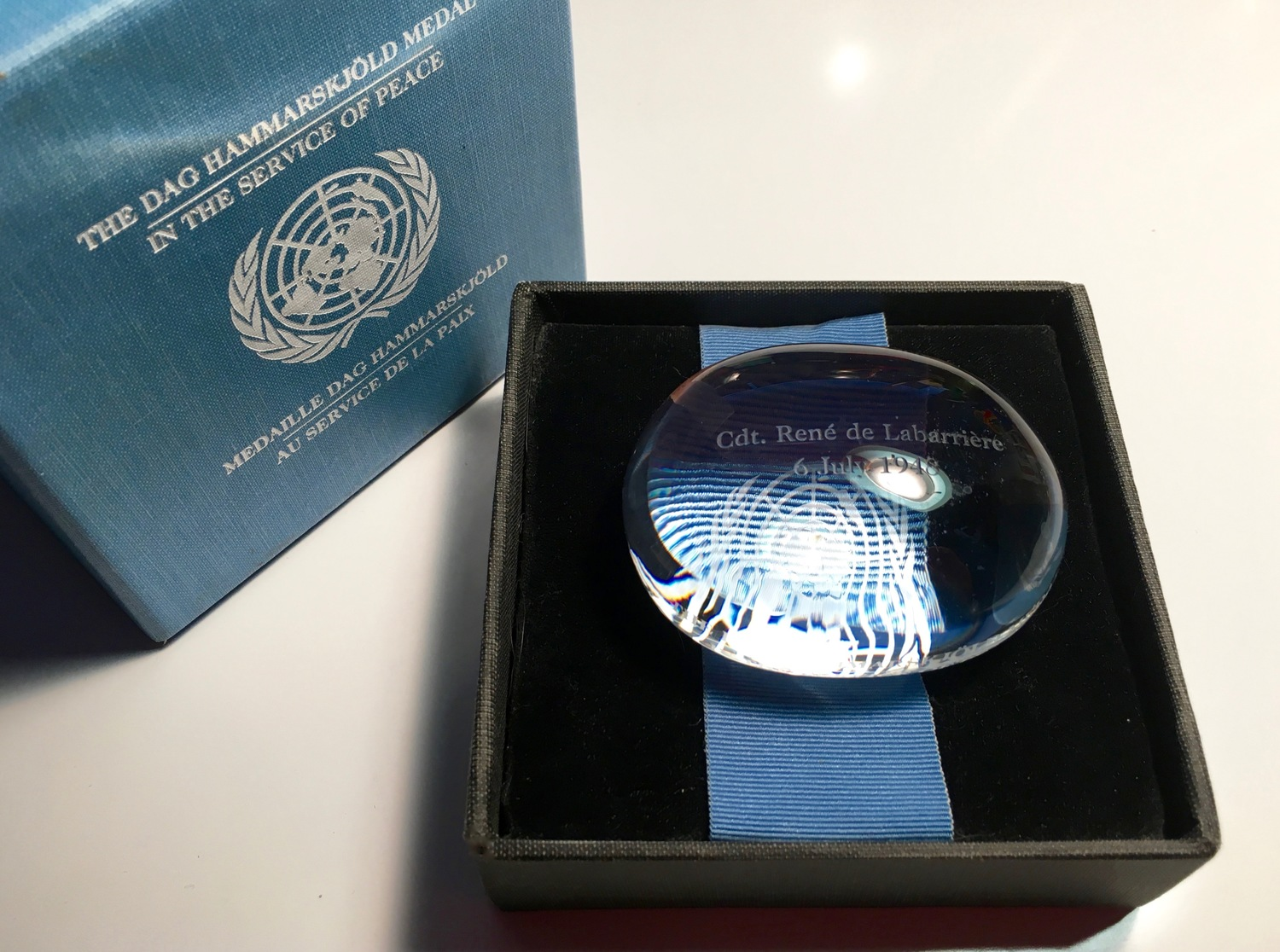
- 30 May 2025
In News:
Two Indian peacekeepers—Brigadier General Amitabh Jha (UNDOF) and Havildar Sanjay Singh (MONUSCO)—are being posthumously awarded the Dag Hammarskjöld Medal by the United Nations. Their sacrifice will be honoured at the U.N. Headquarters during the International Day of U.N. Peacekeepers on May 29, 2025.
Overview:
- Instituted: 1997
- Purpose: Posthumous honour to U.N. peacekeepers who die in service under U.N. authority.
- Awarded on: Peacekeepers' Day (May 29) annually.
- Named after: Dag Hammarskjöld, the 2nd U.N. Secretary-General, who died in a 1961 plane crash during a peace mission in Congo.
- First award (1998): Dag Hammarskjöld and Commandant René de Labarrière (first peacekeeper to die in a U.N. mission, 1948).
Other UN Peacekeeping Awards
- Captain Mbaye Diagne Medal for Exceptional Courage: Recognizes U.N. personnel displaying exceptional bravery.
- UN Military Gender Advocate of the Year Award: Recognizes peacekeepers promoting gender equality under UNSC Resolution 1325.
- 2023 recipient: Major Radhika Sen (India, MONUSCO).
- 2024 recipients: Sqn. Ldr. Sharon Syme (Ghana) and Superintendent Zainab Gbla (Sierra Leone), both serving in UNISFA.
India’s Contribution to UN Peacekeeping
- Total personnel deployed (2025): Over 5,300 Indian troops in missions in: Abyei, Central African Republic, DR Congo, Lebanon, Somalia, South Sudan, and Western Sahara.
- Historical role:
- Since 1950s, India has contributed over 290,000 personnel to 50+ peacekeeping missions.
- India is among the top four contributors of uniformed personnel.
- Engagement includes training, capacity building, and technology support for U.N. missions.
UN Peacekeeping: Global Overview
- Established: 1948 (First mission: United Nations Truce Supervision Organization in the Middle East).
- Cumulative personnel served: Over 2 million in 71 operations.
- Current strength (2025): Around 68,000 personnel from 119 countries in 11 missions across Africa, Asia, Europe, and the Middle East.
- Peacekeepers who have died since 1948: Over 4,400.
Theme 2025: ‘The Future of Peacekeeping’
- Linked to: Pact for the Future adopted in 2024 by global leaders.
- Aim: To reform peacekeeping for modern challenges.
- UN Secretary-General António Guterres emphasized the need for a peacekeeping force ready to face "increasingly complex" global situations.
WMO Climate Forecast 2025–2029
- 30 May 2025
In News:
The World Meteorological Organization (WMO) has released its latest decadal climate forecast (2025–2029), warning of a continued trend of record-breaking global temperatures. This projection raises serious concerns about climate risks, sustainable development, and international climate commitments under the Paris Agreement.
Key Projections:
- Annual Global Temperature Rise: Each year from 2025–2029 is projected to be 1.2°C to 1.9°C above pre-industrial levels (1850–1900).
- Record Heat Likelihood:
- 80% chance that at least one year will surpass 2024, currently the warmest year on record.
- 86% probability that one year will exceed the 1.5°C threshold.
- Five-Year Mean Warming: 70% chance that the 2025–2029 average will be above 1.5°C, a sharp rise from 47% (2024–2028) and 32% (2023–2027).
Note: The Paris Agreement’s 1.5°C limit refers to long-term (20-year) averages, but short-term overshoots are now increasingly probable.
Regional and Thematic Insights:
1. Arctic Amplification: Arctic winters (Nov–Mar) are projected to be 2.4°C warmer than the 1991–2020 average—3.5× faster than the global rate.
2. Sea Ice Decline: Continued sea ice reduction is expected in the Barents Sea, Bering Sea, and Sea of Okhotsk, impacting marine biodiversity and indigenous livelihoods.
3. Precipitation Variability:
- Wetter-than-average conditions likely in:
- Sahel region
- Northern Europe
- Alaska and Northern Siberia
- Drier conditions expected over:
- Amazon Basin
- Parts of South Asia
South Asia may witness generally wet years, though seasonal variability will persist.
Impact and Implications:
- Extreme Weather Events: Increased warming will fuel more intense heatwaves, extreme rainfall, droughts, and floods, stressing both urban systems and agriculture.
- Cryosphere and Ocean Changes:
- Accelerated glacier and sea ice melt will raise sea levels.
- Ocean heating contributes to acidification and marine biodiversity loss.
- Threat to Sustainable Development: Progress on SDGs, particularly food security, water availability, and health, is at risk in vulnerable regions.
Way Forward:
- Revise NDCs at COP30: Strengthen and align Nationally Determined Contributions (NDCs) with the 1.5°C goal.
- Accelerate Clean Energy Transition: Promote renewables, energy efficiency, and net-zero strategies to reduce GHG emissions.
- Adaptation and Resilience: Invest in climate-resilient infrastructure and early warning systems.
- Climate Monitoring & Forecasting: Enhance WMO-led regional forecasts and risk assessment tools.
- Preserve Natural Carbon Sinks: Protect forests, wetlands, and oceans to mitigate atmospheric CO?.
Modified Interest Subvention Scheme (MISS) – FY 2025–26
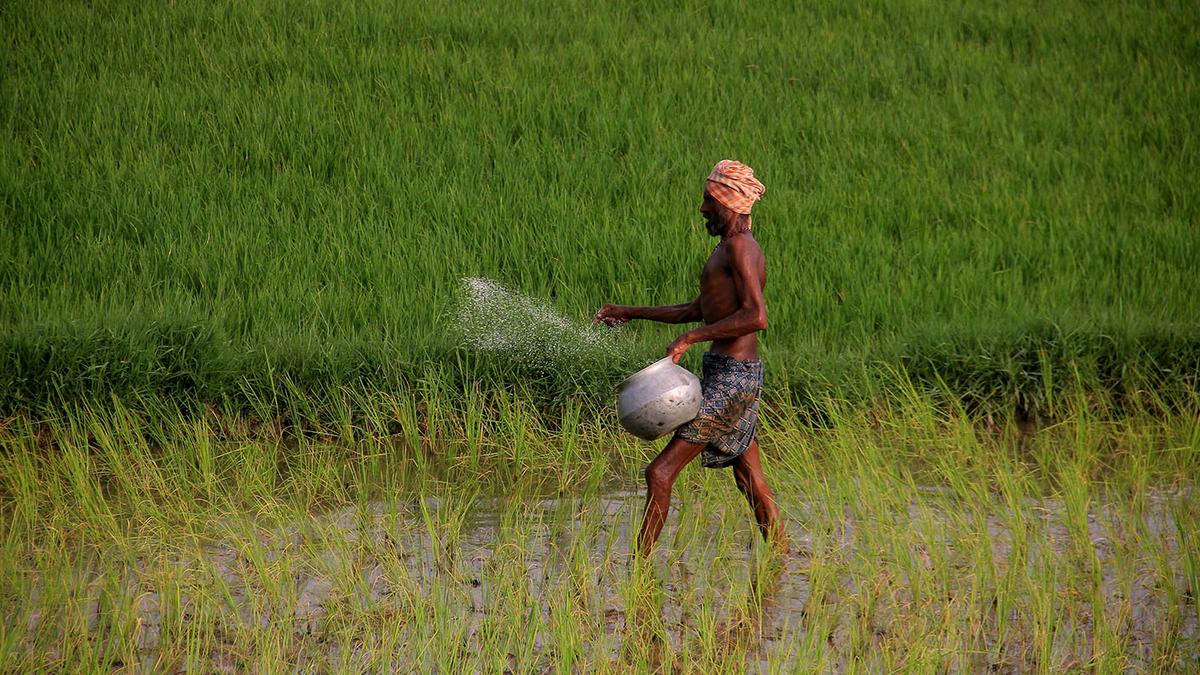
- 29 May 2025
In News:
The Union Cabinet has approved the continuation of the Interest Subvention (IS) component under the Modified Interest Subvention Scheme (MISS) for the financial year 2025–26, retaining the existing structure and interest rates.
About the Scheme:
- Type: Central Sector Scheme
- Objective: To provide short-term agricultural credit to farmers at affordable interest rates through Kisan Credit Cards (KCC).
Key Features:
- Loan Coverage:
- Short-term crop loans up to ?3 lakh per farmer through KCC.
- For loans exclusively for animal husbandry or fisheries, the benefit applies up to ?2 lakh.
- Interest Rates:
- Base interest rate: 7%
- 1.5% interest subvention to lending institutions
- 3% Prompt Repayment Incentive (PRI) for timely repayment
- Effective interest rate for prompt payers: 4%
- Implementing & Monitoring Agencies:
- Reserve Bank of India (RBI)
- National Bank for Agriculture and Rural Development (NABARD)
- Operated via Public Sector Banks, Regional Rural Banks, Cooperative Banks, and Private Banks in rural/semi-urban areas.
Recent Updates and Rationale:
- No structural changes have been introduced in the scheme for FY 2025–26.
- The scheme continues amidst rising lending costs, with stable repo rates and MCLR trends.
- It ensures credit access for small and marginal farmers, critical for financial inclusion and agricultural productivity.
Impact on Agricultural Credit:
- KCC Accounts: Over 7.75 crore active accounts across India.
- Institutional Credit Growth:
- Disbursement via KCC increased from ?4.26 lakh crore (2014) to ?10.05 lakh crore (Dec 2024).
- Total agricultural credit rose from ?7.3 lakh crore (FY 2013–14) to ?25.49 lakh crore (FY 2023–24).
- Digital Reform: Kisan Rin Portal (KRP) launched in August 2023 has improved transparency and efficiency in claim processing.
Significance:
- Helps ensure timely and affordable institutional credit to the farming sector.
- Supports the government's goal of doubling farmers’ income.
- Strengthens the rural credit delivery system and promotes inclusive growth in agriculture.
Madden-Julian Oscillation (MJO)
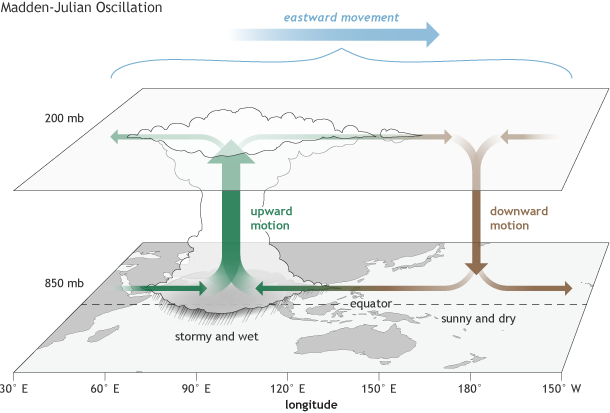
- 29 May 2025
In News:
In 2025, the early onset of the southwest monsoon in Kerala (May 24) and Mumbai (May 26—the earliest on record) was significantly influenced by the Madden-Julian Oscillation (MJO), as reported by the India Meteorological Department (IMD).
What is the MJO?
- The Madden-Julian Oscillation (MJO) is a large-scale atmospheric phenomenon observed in the tropical belt (30°N to 30°S).
- It is an eastward-moving disturbance involving winds, clouds, pressure, and rainfall that circles the globe every 30 to 60 days (occasionally up to 90 days).
- Identified in 1971 by Roland Madden and Paul Julian, it differs from ENSO (El Niño–Southern Oscillation) in being intra-seasonal and transient.
Phases of MJO:
- Enhanced Convective Phase:
- Associated with increased cloudiness, low pressure, and above-normal rainfall.
- Characterized by rising air and moisture convergence.
- Suppressed Convective Phase:
- Brings clearer skies and reduced rainfall due to subsiding dry air.
- These phases shift eastward and influence weather globally, including India.
Formation and Movement:
- Triggered by surface wind convergence that causes upward motion, cloud formation, and upper-level wind divergence.
- Travels at 4–8 m/s, completing a global circuit roughly every 30–60 days.
MJO’s Impact on Indian Monsoon:
- MJO in active phase over the Indian Ocean can:
- Trigger early monsoon onset, as seen in 2024 and 2025.
- Enhance cyclogenesis and monsoon depressions.
- Improve intra-seasonal rainfall variability.
- May 2025 Event:
- The MJO was in Phase 4 with amplitude >1, indicating strong activity conducive to rainfall.
- This condition, along with favorable local and oceanic factors, supported early monsoon advancement in India.
Global Influence of MJO:
- Cyclone Modulation: Alters frequency and intensity of tropical cyclones.
- Weather Extremes: Affects jet streams, triggering cold surges, heatwaves, or floods in mid-latitudes (e.g., U.S., Europe, Australia).
- Interaction with ENSO: While not always directly linked, MJO can amplify or be influenced by El Niño conditions.
Panchayat Advancement Index (PAI) 2.0
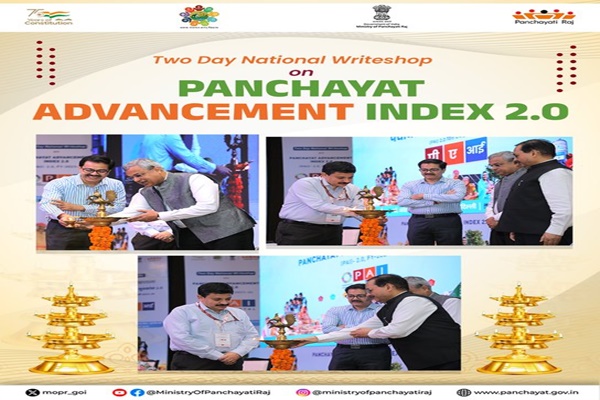
- 28 May 2025
In News:
The Ministry of Panchayati Raj recently held a two-day national write-shop in New Delhi to roll out the Panchayat Advancement Index (PAI) Version 2.0 for the financial year 2023–24. This updated version marks a significant stride toward enabling evidence-based, participatory local governance in India.
What is Panchayat Advancement Index (PAI)?
The PAI is a multi-domain, multi-sectoral index designed to assess the developmental progress, performance, and governance efficiency of Gram Panchayats. It aligns with the Localization of Sustainable Development Goals (LSDGs) and India's broader commitment to the 2030 SDG Agenda.
Key Features of PAI 2.0
- Framework: Based on 435 unique local indicators (331 mandatory, 104 optional), drawn from 566 data points across 9 LSDG themes, aligned with the National Indicator Framework (NIF) of the Ministry of Statistics and Programme Implementation (MoSPI).
- Purpose:
- Measures holistic development and well-being at the grassroots level.
- Helps identify developmental gaps and supports data-driven planning for Panchayats.
- Encourages bottom-up planning and governance.
- Performance Classification:
- Achiever: 90 and above
- Front Runner: 75 to <90
- Performer: 60 to <75
- Aspirant: 40 to <60
- Beginner: Below 40
Evolution from PAI 1.0 to 2.0
- PAI 1.0 established the baseline, covering 2.16 lakh Gram Panchayats across 29 States/UTs.
- PAI 2.0 offers enhanced functionality, efficiency, and user-friendliness, with refined indicators and improved data usability, while maintaining thematic comprehensiveness.
Recent Developments
- Launch of the PAI 2.0 Portal and a comprehensive PAI 2.0 Booklet for FY 2023–24 to guide implementation.
- According to the Ministry, PAI 2.0 now contains over 100 indicators that collectively offer a robust picture of social and economic development at the Panchayat level.
National Apprenticeship Promotion and Training Schemes
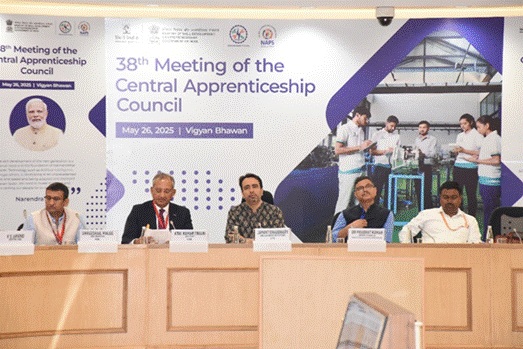
- 28 May 2025
In News:
Recently, the 38th Meeting of the Central Apprenticeship Council (CAC), chaired by the Minister of State (Independent Charge) for the Ministry of Skill Development and Entrepreneurship (MSDE), recommended a 36% increase in stipends under two key skilling initiatives—National Apprenticeship Promotion Scheme (NAPS) and National Apprenticeship Training Scheme (NATS). This move aims to enhance apprenticeship attractiveness, reduce dropout rates, and improve youth employability across India.
About NAPS (Launched: 19 August 2016)
- Objective: To build industry-relevant skilled manpower by promoting on-the-job training and bridging the gap between education and employment.
- Administered by: Ministry of Skill Development and Entrepreneurship (MSDE).
- Key Features:
- Provides financial support to establishments for engaging apprentices.
- Encourages MSME participation and focuses on aspirational districts and the North-East.
- Offers partial stipend reimbursement under the Apprentices Act, 1961.
- Apprentices receive a certificate from NAPS, enhancing employability.
- Over 43.47 lakh apprentices engaged across 36 States/UTs till May 2025.
- Female participation reached 20%, with efforts to boost inclusion.
About NATS
- Target Group: Graduates, Diploma holders, and Vocational certificate holders.
- Provisions:
- Offers 6–12 months of practical, hands-on training.
- Employers receive 50% stipend reimbursement.
- Apprentices are issued a Government of India Certificate of Proficiency, valid across employment exchanges.
- FY 2024–25 Stats: Over 5.23 lakh apprentices enrolled.
Key Reforms Recommended by CAC (2025)
- Stipend Enhancement:
- Proposed increase from ?5,000–?9,000 to ?6,800–?12,300.
- To be adjusted biennially based on Consumer Price Index (CPI).
- Inclusive Skilling Framework:
- Definition of “Person with Benchmark Disability” to be added under the Apprenticeship Rules.
- Trades must indicate suitability for PwBDs with reserved training slots.
- Curricular Integration:
- Push for Degree Apprenticeships and Apprenticeship Embedded Degree Programmes (AEDP).
- Definitions added for "Institution", "UGC", and "Contractual Staff".
- Flexible Training Modes: Employers may provide Basic and Practical Training through online, virtual, or blended modes, adhering to standard curricula.
- Decentralized Administration: Proposal to establish Regional Boards to improve scheme outreach and governance.
- Sectoral Expansion:
- Adoption of NIC Code 2008 to replace outdated 1987 list.
- Brings emerging sectors like IT, software, telecom, biotech, and renewable energy under apprenticeship coverage.
- Operational Improvements:
- Align CTS (Craftsmen Training Scheme) courses with apprenticeship notification timelines.
- Consideration of location-based stipend rationalization based on cost of living.
- Proposal for insurance coverage for apprentices during contract periods.
Governance and Stakeholder Involvement
The Central Apprenticeship Council includes representatives from:
- Ministries: Education, Labour, MSME, Railways, Textiles.
- Industry: BHEL, Indian Oil, Tata, Maruti, Reliance.
- Institutions: NSDC, UGC, AICTE.
- State advisors and domain experts from labour and education fields.
Massive Solar Eruption: The ‘Bird-Wing’ Event

- 27 May 2025
In News:
In May 2025, astronomers observed a dramatic solar eruption, dubbed the “Bird-Wing” event, due to its unique wing-like plasma structure. Originating from the Sun’s northern hemisphere, the eruption stretched over 1 million kilometers—more than twice the Earth-Moon distance.
Key Components of the Event
- Solar Flare:
- A sudden, intense burst of electromagnetic radiation caused by magnetic field realignment on the Sun.
- Classified from A to X (increasing order of X-ray brightness).
- Travels at light speed, reaching Earth in about 8 minutes.
- Can disrupt radio communication and GPS systems by affecting the ionosphere.
- Coronal Mass Ejection (CME):
- A massive release of charged solar plasma and magnetic fields into space.
- Travels at 250–3000 km/s, reaching Earth in 18 hours to 3 days.
- Can cause geomagnetic storms, impacting power grids, satellites, navigation, and inducing auroras.
The “Bird-Wing” event involved both phenomena, but Earth narrowly avoided a direct hit, experiencing only a glancing blow. The impact was minimal and did not cause significant technological disruptions.
Associated Geomagnetic Effects
- A filament eruption, distinct from solar flares, was responsible for the minor geomagnetic activity observed. These are cooler plasma structures held by magnetic fields and appear as dark strands on solar imagery. When destabilized, they erupt and emit charged particles.
- Northern Lights (Aurora Borealis) were expected to be visible over parts of the UK, particularly Scotland, as the trailing edge of the CME brushed past Earth.
Space Weather Risks from Solar Storms
According to the European Space Agency (ESA) and NASA:
- Solar flares can disrupt radio signals and satellite communication.
- Solar particles, including high-energy protons, may arrive hours later, posing risks to astronauts and electronics.
- Geomagnetic storms can:
- Disturb Earth's magnetic field.
- Affect power lines, pipelines, and satellites.
- Expand the upper atmosphere, increasing drag on low-orbit satellites, potentially altering their trajectory.
- Temporarily reduce the number of cosmic rays reaching Earth by deflecting them.
Turtle Conservation in Assam’s Temple Ponds
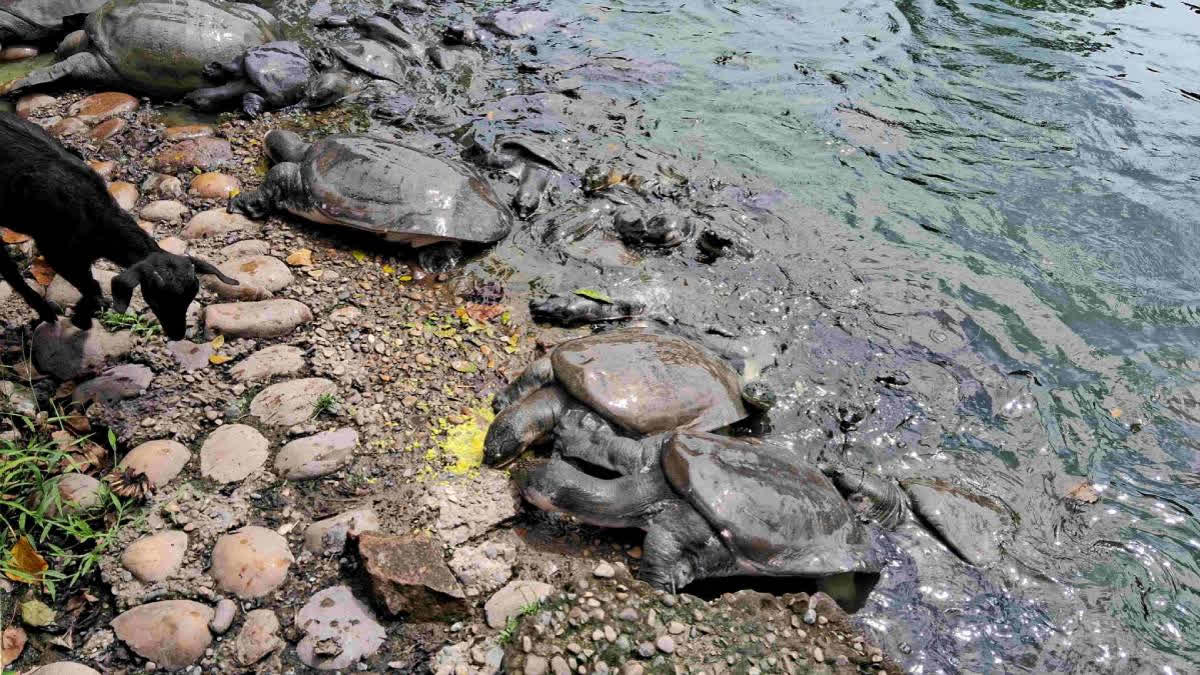
- 26 May 2025
In News:
On World Turtle Day (May 23, 2025), Assam’s Nagshankar Temple was officially declared a model temple for turtle conservation, highlighting the ecological role of temple ponds in preserving India’s turtle biodiversity.
Key Highlights
Nagshankar Temple – A Model for Turtle Conservation
- Location: Sootea town, Biswanath district, ~70 km from Tezpur, Assam.
- Established: Believed to be built in the 4th century AD by King Nagashankar of the Nagakha dynasty.
- Religious Importance: Dedicated to Lord Shiva, but turtles are revered as incarnations of Lord Vishnu.
- Ecological Value: Functions as a micro-wildlife sanctuary — home to 250–300 turtles, along with peacocks, pythons, and deer.
Turtle Conservation Initiatives
Species Conserved:
- Black Softshell Turtle (Nilssonia nigricans) – Critically Endangered
- Indian Softshell Turtle (Nilssonia gangetica)
- Malayan Softshell Turtle
These species thrive in the temple pond, which is fed by the Brahmaputra River basin, offering a suitable natural habitat.
Community & Scientific Collaboration:
- Key Stakeholders:
- Nagshankar Temple Committee
- Turtle Survival Alliance (TSA) India
- Help Earth (NGO)
- Kaziranga National Park & Tiger Reserve
- Assam Forest Department
- Conservation Methods:
- Artificial egg incubation and wild release of hatchlings.
- Dried-fish diet introduced for temple turtles, replacing harmful offerings (e.g., biscuits, puffed rice).
- Capacity-building workshops for forest staff and students to aid in turtle surveys.
Result: 486 hatchlings of the black softshell turtle have been released into the wild from the Nagshankar Temple pond.
Statewide Turtle Conservation Model
- Assam houses ~25 temple ponds actively involved in turtle conservation.
- Notable site: Hayagriva Madhav Temple in Hajo (Kamrup district).
- State Zoo in Guwahati has a dedicated breeding facility (established 2010) for the Assam Roofed Turtle (Pangshura sylhetensis, "Asomi Dura").
Landmine and Cluster Munition Treaties
- 07 Apr 2025
In News:
In a major shift that challenges global disarmament efforts, NATO members Poland, Finland, and the three Baltic states—Estonia, Latvia, and Lithuania—have announced their withdrawal from the 1997 Ottawa Convention banning anti-personnel landmines. These countries cite growing security threats from Russia amidst the ongoing Russia-Ukraine war as the primary reason for exiting the treaty.
Ottawa Convention (1997)
- Objective: To prohibit the use, stockpiling, production, and transfer of anti-personnel landmines, and to mandate the destruction of existing stockpiles within four years.
- Adoption and Enforcement: Finalized in Oslo on 18 September 1997, it came into force on 1 March 1999.
- Scope: The treaty bans anti-personnel mines but not anti-vehicle mines.
- Membership: 164 states are party to the convention. However, major powers like the US, Russia, China, and India have not signed or ratified it.
- Humanitarian Impact:
- Over 80% of landmine victims are civilians (ICRC).
- Ukraine has been declared the most mined country in the world (UN, October 2024), with 1,286 civilian victims reported as of August 2024.
- Victim Assistance: The Convention includes obligations to assist mine victims, many of whom suffer permanent disabilities.
Motivations Behind Withdrawals
- The withdrawing countries argue that their security environment has fundamentally changed, especially with the threat of Russian aggression.
- They fear that any ceasefire in Ukraine might allow Russia to regroup and pose a direct threat to bordering nations.
- By exiting the convention, these states aim to achieve military parity with Russia, which is not a party to the treaty.
- Poland has already indicated interest in resuming landmine production.
Impact on Global Demining and Humanitarian Efforts
- The move risks reversing decades of global advocacy and humanitarian work.
- Compounding the problem, global demining efforts are under stress due to sharp US funding cuts. The US had been the largest donor, contributing over $300 million annually, or 40% of global demining funds (Landmine Monitor 2024).
- Though the US has resumed some humanitarian demining programs (March 2024), specific details remain limited.
Convention on Cluster Munitions (2008)
- Purpose: Bans the use, production, transfer, and stockpiling of cluster munitions.
- Mechanism: These weapons disperse bomblets over large areas, posing serious risks to civilians long after deployment.
- Membership: 112 state parties and 12 signatories.
- Recent Withdrawal: Lithuania has signaled its withdrawal from this treaty.
- Non-Signatories: India, the US, Russia, China, Ukraine, and Israel have not joined the convention due to strategic and military considerations.
- Recent Usage: In 2023, the US supplied cluster munitions to Ukraine as part of its defense against Russian invasion.
6th BIMSTEC Summit
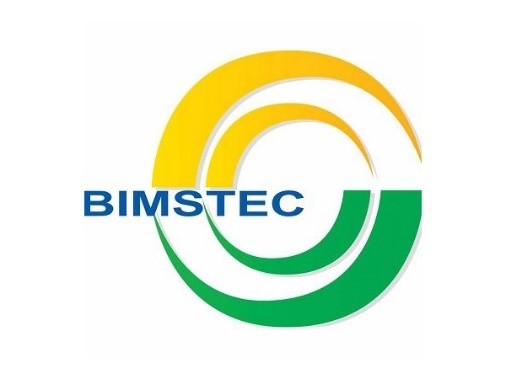
- 07 Apr 2025
In News:
The 6th BIMSTEC Summit was recently held in Bangkok, Thailand, under the theme “BIMSTEC: Prosperous, Resilient, and Open.”The Indian Prime Minister participated in the Summit, emphasizing regional connectivity, economic integration, and collective resilience.
About BIMSTEC
- Full Form: Bay of Bengal Initiative for Multi-Sectoral Technical and Economic Cooperation
- Members: Bangladesh, Bhutan, India, Myanmar, Nepal, Sri Lanka, and Thailand
- Founded: 1997 (Bangkok Declaration)
- Initial Name: BIST-EC (later BIMST-EC, and finally BIMSTEC in 2004)
- Population & Economy: Covers 1.7 billion people (~22% of world population) with a combined GDP of USD 5.2 trillion (2023)
Key Outcomes:
- Summit Declarations and Documents
- Bangkok Vision 2030: Adopted as a roadmap for regional economic integration, technological collaboration, and resilience against global challenges.
- 21-point Action Plan: Proposed by India to revitalize BIMSTEC as a dynamic platform for regional cooperation, especially in light of SAARC’s dormancy.
- Institutional and Governance Reforms
- Enforcement of the BIMSTEC Charter.
- Institutionalization of the Home Ministers' Mechanism, with India offering to host the first meeting.
- Strengthening mechanisms to counter terrorism, cybercrime, and human trafficking.
India’s Key Announcements and Initiatives
A. Centres of Excellence
India announced the establishment of BIMSTEC Centres of Excellence in:
- Disaster Management
- Sustainable Maritime Transport
- Traditional Medicine
- Agricultural Research and Training
B. Connectivity and Digital Infrastructure
- Operationalization of the BIMSTEC Energy Centre in Bengaluru.
- Proposal to link India’s UPI with BIMSTEC payment systems.
- Launch of a pilot study on Digital Public Infrastructure (DPI) for governance and service delivery.
C. Trade and Economic Integration
- Proposal to create a BIMSTEC Chamber of Commerce.
- Plan for an Annual Business Summit.
- Suggestion for a feasibility study on trade in local currencies.
D. Maritime and Space Cooperation
- Proposal for a Sustainable Maritime Transport Centre in India.
- Support for electric grid interconnection across member states.
- Space cooperation: development of nano-satellites, remote sensing data sharing, and training via a dedicated ground station.
Human Development and Cultural Engagement
- BIMSTEC for Organized Development of Human Resource Infrastructure (BODHI):
- Training for 300 youth annually.
- Scholarships (e.g., Nalanda University, Forestry Research Institute).
- Diplomatic training programs.
Health Sector
- Cancer Care Capacity Building Program for BIMSTEC countries.
Youth and Cultural Initiatives
- BIMSTEC Traditional Music Festival
- Young Leaders’ SummitandHackathon
- Young Professional Visitors Program
- BIMSTEC Athletics Meet (2025)
- BIMSTEC Games (2027)– to mark the 30th anniversary
India–Thailand Strategic Partnership (Announced on Sidelines)
Maritime and Regional Cooperation
- Strengthening ties via Indo-Pacific Oceans Initiative (IPOI) and ASEAN Outlook on Indo-Pacific (AOIP).
- Boosting connectivity via the India–Myanmar–Thailand Trilateral Highway.
Defence and Security
- Expansion of defence dialogues and joint military exercises (e.g., Exercise Maitree).
- Cooperation in cybersecurity, counter-terrorism, and intelligence sharing.
Economic and Trade Engagement
- Enhancing supply chain resilience, boosting bilateral trade, and exploring FTA upgradation.
Science and Innovation
- Joint ventures in renewable energy, space technology, and biotech innovation.
- Cooperation on digital public infrastructure.
Cultural Relations
- Promotion of Buddhist heritage, education exchanges, and tourism.
- Engagement with the Indian diaspora in Thailand.
Technology and Innovation Report 2025
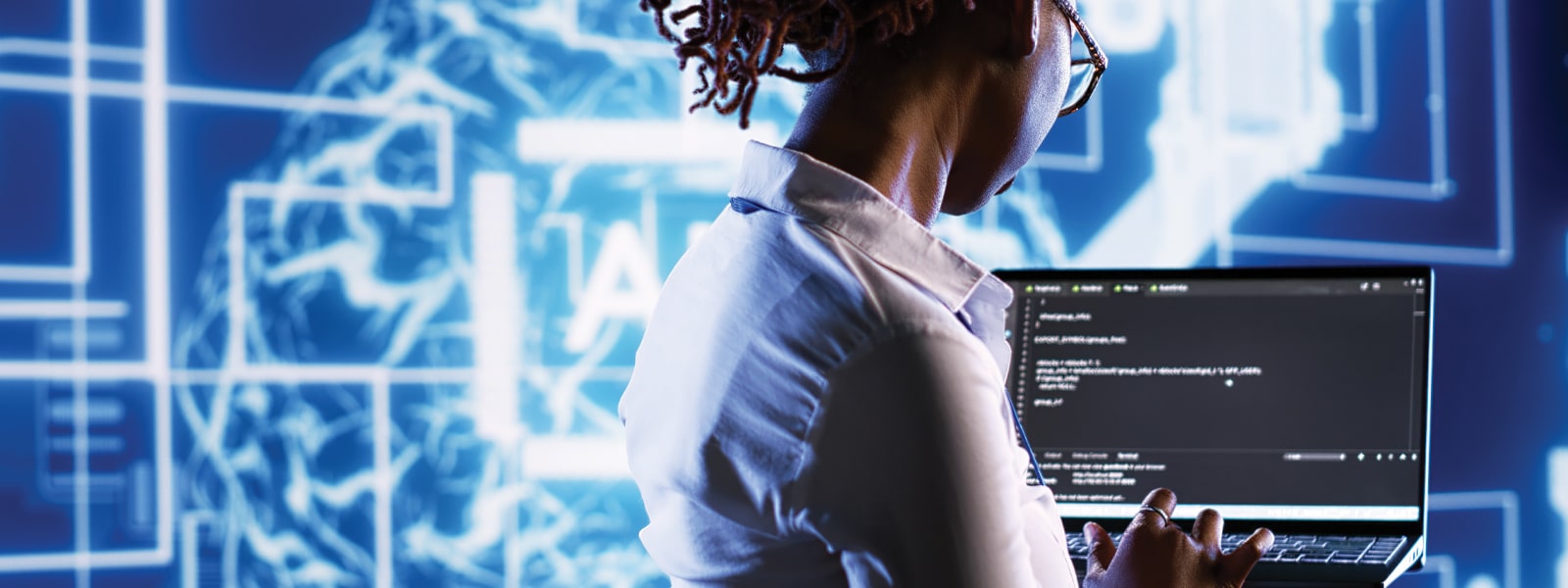
- 07 Apr 2025
In News:
India has been ranked 10th globally in terms of private sector investments in Artificial Intelligence (AI) in 2023, according to the Technology and Innovation Report 2025, released by the United Nations Conference on Trade and Development (UNCTAD). The report highlights the evolving global AI landscape and underscores India's growing role in frontier technologies.
About the Technology and Innovation Report
- Published by: UNCTAD (United Nations Conference on Trade and Development).
- Objective: To provide policy-relevant insights on emerging issues in science, technology, and innovation (STI), especially from the perspective of developing countries.
- Theme of the 2025 Edition: “Inclusive Artificial Intelligence for Development”.
- Purpose: Aims to assist policymakers in formulating inclusive and equitable STI policies amid the rapid expansion of AI technologies.
Key Highlights of the 2025 Report
- India’s Position:
- Ranked 10th globally for private AI investments, amounting to $1.4 billion in 2023.
- Among developing countries, only India and China feature prominently in global AI investments.
- India’s growing prominence reflects its rising technological capacity and startup ecosystem.
- Global Investment Trends:
- The United States led global AI investment with $67 billion (70% of global private investment).
- China ranked second with $7.8 billion.
- The report reveals that just 100 companies, mainly from the US and China, account for 40% of global private R&D investment in AI, signifying a concentration of technological power.
- AI and Global Employment:
- The report warns that up to 40% of global jobs could be influenced by AI-driven automation, necessitating adaptive policies, especially in the Global South.
- Governance Gaps:
- 118 countries, mostly from the Global South, are not participating meaningfully in global AI governance dialogues, highlighting a digital divide in international policy spaces.
- Recommendations for Developing Countries:
UNCTAD urges developing nations to strengthen three critical areas, termed “key leverage points”:- Infrastructure: Improve digital and physical infrastructure.
- Data Ecosystems: Ensure data accessibility, quality, and sovereignty.
- Human Capital and Skills: Invest in AI-related education and skilling.
- India’s Broader Performance:
- Ranked 36th out of 170 countries on the Readiness for Frontier Technologies Index 2024, an improvement from 48th in 2022.
Artificial Rain to combat Delhi’s Air Pollution
- 06 Apr 2025
In News:
With the national capital grappling with chronic air pollution every winter, the Delhi Government is exploring artificial rain (cloud seeding) as a potential mitigation strategy. In a recent high-level meeting chaired by Environment Minister Manjinder Singh Sirsa, experts and representatives from key institutions brainstormed the feasibility and logistics of implementing cloud seeding in Delhi's airspace.
What is Artificial Rain (Cloud Seeding)?
- Cloud seeding is a form of weather modification aimed at inducing rainfall.
- It involves spraying chemical agents such as silver iodide or salt particles into clouds to stimulate condensation and precipitation.
- Requires favourable meteorological conditions, especially adequate moisture and cloud density.
- Usually conducted using aircraft or ground-based dispersal systems.
Significance for Delhi:
- Rainfall helps settle airborne particulate matter (PM2.5 and PM10), thereby reducing pollution levels.
- Delhi’s air quality worsens in winter due to a combination of low wind speeds, crop residue burning, vehicular and industrial emissions, and construction dust.
- Artificial rain could serve as an emergency intervention to improve air quality during severe pollution episodes.
Key Highlights of the Meeting:
- Convened by Delhi Environment Department with participation from:
- CPCB, DPCC
- Ministry of Defence, MoEFCC
- IIT-Kanpur, India Meteorological Department (IMD)
- Directorate General of Civil Aviation (DGCA), AAI
- IIT-Kanpur scientists shared results from previous successful cloud seeding trials in Kanpur (2023), demonstrating its potential under ideal conditions.
- Past trials in 2018 also showed partial success, with rainfall occurring in 5 out of 6 attempts during pre-monsoon months.
Challenges Identified:
- Weather-dependence: Effectiveness relies heavily on cloud presence and moisture levels, which are limited in Delhi during winters.
- Airspace clearance and coordination among multiple agencies (civil aviation, defence).
- High costs and uncertain outcomes make it a supplementary, not primary, solution.
Complementary Measures Underway:
- Delhi’s 14-point action plan to curb dust pollution includes:
- Anti-smog guns, covering construction sites, cleaning of construction vehicles, andregulated debris disposal.
- Exploring static ionisation systems as an alternative to cloud seeding for artificial precipitation.
Mount Marapi Eruption
- 06 Apr 2025
In News:
In May 2025, Mount Marapi, one of Indonesia’s most active volcanoes, erupted, spewing a column of volcanic ash 1.5 km into the sky. The event has once again highlighted the seismic vulnerability of the Pacific Ring of Fire, where tectonic activity frequently triggers volcanic eruptions and earthquakes.
About Mount Marapi
- Location: Situated in the Padang Highlands of western Sumatra, Indonesia.
- Type: A stratovolcano (composite volcano), consisting of successive layers of lava, ash, and pyroclastic material.
- Elevation: Rises to 2,891 meters (9,485 feet) above sea level, making it the highest peak in the region.
- Summit Feature: Contains the Bancah caldera (approx. 1.4 km wide), with multiple overlapping craters.
- Tectonic Setting: Lies on the Pacific Ring of Fire, a highly seismically active zone encircling the Pacific Ocean.
- Notable Eruption: In 1979, a deadly eruption-induced lahar (volcanic mudflow) caused by intense rainfall resulted in 60 fatalities.
Seaweed Farming in India
- 06 Apr 2025
In News:
With growing attention on sustainable marine resources and coastal livelihood enhancement, the Government of India is promoting seaweed cultivation as part of its broader Blue Economy strategy. Recognized for its nutritional, economic, and ecological value, seaweed farming is emerging as a viable livelihood and environmental solution for India's coastal communities.
What is Seaweed?
Seaweed is a nutrient-rich marine plant that grows in shallow ocean waters. It is:
- Rich in vitamins, minerals, amino acids, and 54 trace elements.
- Known to aid in managing non-communicable diseases such as cancer, diabetes, cardiovascular ailments, and hypertension.
- Used in food, cosmetics, fertilizers, medicines, and industrial gelling agents like agar, alginate, and carrageenan.
Global Significance and Industry Potential
- The global seaweed market is valued at US$ 5.6 billion and projected to reach US$ 11.8 billion by 2030 (World Bank).
- Major consumers: Japan, China, and South Korea.
- India possesses vast untapped potential with over 7,500 km of coastline and 844 identified seaweed species, of which ~60 are commercially viable.
Seaweed and the Blue Economy in India
Government Initiatives:
- Pradhan Mantri MatsyaSampada Yojana (PMMSY) (launched in 2020):
- Total Outlay: ?20,050 crore.
- ?640 crore allocated for seaweed development (2020–25).
- Goal: Increase seaweed production to 1.12 million tonnes in five years.
- Projects funded:
- Multipurpose Seaweed Park in Tamil Nadu.
- Seaweed Brood Bank in Daman & Diu.
- Provision of 46,095 rafts and 65,330 monocline tubenets to farmers.
Supportive Regulatory Measures:
- Seaweed-based biostimulants regulated under the Fertilizer (Control) Order, 1985.
- Integrated with Paramparagat Krishi Vikas Yojana (PKVY) and MOVCDNER to promote organic farming.
Economic, Environmental & Social Benefits
Economic:
- Seaweed farming offers high returns — e.g., farming Kappaphycusalvarezii may yield up to ?13.28 lakh/hectare/year.
- Generates foreign exchange through exports of seaweed-based bio-products.
Environmental:
- Requires no land, freshwater, fertilizers, or pesticides.
- Absorbs CO?, combats ocean acidification, and enhances marine biodiversity.
Social:
- Provides alternative livelihoods for fishers.
- Particularly beneficial for women and youth, promoting inclusive growth in coastal regions.
Success Stories and Innovations
Women Empowerment in Tamil Nadu:
Four women from Mandapam, Tamil Nadu, trained under PMMSY, successfully cultivated seaweed, producing 36,000 tonnes despite cyclones and market challenges. Their venture created employment and inspired other women.
Tissue Culture Innovation:
The CSIR-Central Salt and Marine Chemicals Research Institute (CSIR-CSMCRI)developed tissue-cultured Kappaphycusalvareziiseedlings, leading to:
- 20–30% higher growth rates.
- Better carrageenan quality.
- Enhanced farmer productivity in Tamil Nadu’s coastal districts.
Challenges and Way Forward
Challenges:
- Vulnerability to climatic shocks (cyclones, salinity changes).
- Limited market access and value chain infrastructure.
- Need for increased awareness and skill-building in coastal areas.
Recommendations:
- Strengthen public-private partnerships and R&D for better cultivars.
- Expand seaweed farming cooperatives with financial inclusion mechanisms.
- Promote Blue Economy integration in coastal development policies.
Heard and McDonald Islands
- 05 Apr 2025
In News:
Donald Trump has imposed a 10% tariff on imports from the Heard and McDonald Islands.
Geographical Context
- Heard Island and McDonald Islands (HIMI) are remote, sub-Antarctic volcanic islands in the southern Indian Ocean, situated:
- ~4,100 km southwest of Perth (Australia),
- ~1,600 km north of the Antarctic coast.
- They are one of Australia’s seven external territories, administered directly by the Australian government.
Physical and Ecological Significance
- Volcanically active: Home to Big Ben (2,745 m, Mawson Peak), Australia’s highest mountain outside the mainland and Tasmania.
- McDonald Island has expanded due to recent eruptions in the 1990s and 2000s.
- Only volcanically active sub-Antarctic islands, making them valuable for studying:
- Earth’s crustal processes,
- Glacial dynamics,
- Oceanic and atmospheric changes.
- Designated as a UNESCO World Heritage Site (1997) and classified under IUCN Category Ia (Strict Nature Reserve).
Biodiversity
- Inhabited by marine birds and mammals like:Penguins, elephant seals, and seabirds.
- Notable for being free from invasive species, aiding biodiversity and evolutionary research.
- Largely uninhabited by humans; no known permanent population.
US Tariff Controversy
- The US President (Donald Trump) imposed a 10% tariff on imports from HIMI—despite the islands having no known exports or trade with the US.
- The islands have no recent human presence and are mainly home to wildlife.
- Other Australian external territories targeted by similar tariffs include:
- Norfolk Island – 29% tariff despite limited economic activity.
- Cocos (Keeling) Islands and Christmas Island – 10% tariff.
- The British Indian Ocean Territory (BIOT), including Diego Garcia, also faced a 10% tariff. Diego Garcia hosts a US-UK military base, with no civilian population.
Protection of Interests in Aircraft Objects Bill, 2025
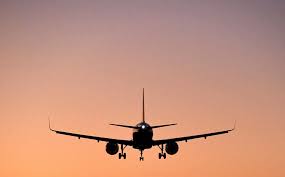
- 04 Apr 2025
In News:
The Protection of Interests in Aircraft Objects Bill, 2025, recently passed by the Rajya Sabha, aims to implement two key international agreements in India’s legal framework:
- Cape Town Convention on International Interests in Mobile Equipment (2001)
- Protocol to the Convention on Matters Specific to Aircraft Equipment
Objective:
To provide legal clarity and security to stakeholders in the aviation leasing industry by integrating global standards into Indian law.
Background:
- India became a signatory in 2008 after Cabinet ratification in 2007.
- The Cape Town Convention addresses complex issues of cross-border leasing and financing of high-value mobile assets like aircraft, helicopters, and engines.
- With over 86.4% of India's 840 commercial aircraft under leasing arrangements, there was an urgent need for a dedicated legal framework.
Key Provisions:
- Directorate General of Civil Aviation (DGCA) is designated as the registry authority.
- Responsible for registration and deregistration of aircraft.
- Creditors must notify the DGCA prior to initiating recovery actions in case of defaults.
- In case of default by airlines:
- Creditors can reclaim aircraft or related equipment within two months, or as per a mutually agreed period.
- Lessors and airlines are required to regularly inform the DGCA about dues and lease activities.
- The central government is empowered to make rules for the implementation of the convention and protocol.
Expected Benefits:
- Enhances legal protection for creditors and lessors.
- Reduces leasing costs by an estimated 8–10%, potentially lowering airfares for consumers.
- Encourages the growth of a domestic aircraft leasing industry, reducing dependence on foreign jurisdictions like Ireland, Singapore, and Dubai.
Civil Aviation Minister’s Remarks:
- The Bill addresses a long-standing legislative vacuum.
- It will bolster investor confidence and attract leasing businesses to India.
- Airfare regulation remains complex and is influenced by multiple factors including fuel prices, leasing charges, and maintenance costs.
Exercise Tiger Triumph 2025
- 03 Apr 2025
In News:
- India and the United States have commenced the fourth edition of their major tri-service military exercise ‘Tiger Triumph’ in the Bay of Bengal, beginning April 1, 2025.
- The two-week-long drill focuses on Humanitarian Assistance and Disaster Relief (HADR) and crisis response, marking a significant step in the growing strategic defence partnership between the two nations.
Key Objectives:
- Enhance interoperability between the Indian and U.S. armed forces for joint HADR operations.
- Formulate Standard Operating Procedures (SOPs) for establishing a Combined Coordination Centre (CCC) for joint response during natural disasters and contingency operations.
- Conduct massive maritime and amphibious operations off the coast of Kakinada, following a harbour phase at Visakhapatnam.
Participating Forces and Assets:
India:
- Indian Navy:
- Ships: INS Jalashwa, INS Gharial, INS Mumbai, and INS Shakti
- Aircraft: P-8I long-range maritime patrol aircraft
- Support: Integral helicopters and landing crafts
- Indian Army:
- Troops from 91 Infantry Brigade
- 12 Mechanised Infantry Battalion
- Indian Air Force (IAF):
- Aircraft: C-130J ‘Super Hercules’
- Helicopters: Mi-17
- Rapid Action Medical Team (RAMT)
United States:
- U.S. Navy:
- USS Comstock (amphibious warship)
- USS Ralph Johnson (guided-missile destroyer)
- U.S. Marine Corps:
- Marine division troops onboard naval vessels
- Medical personnel to collaborate with Indian RAMT
Additional Activities:
- Establishment of a Joint Command and Control Centre at the Kakinada naval enclave by the Indian Army and U.S. Marines.
- Setting up of a Joint Medical Camp for humanitarian aid by IAF, Indian RAMT, and U.S. Navy medical teams.
- Training exchanges, sports events, and social interactions between personnel to foster mutual understanding and cooperation.
Strategic Significance:
Exercise Tiger Triumph is part of the broader India-U.S. defence cooperation, which includes:
- Army exercises:YudhAbhyas, Vajra Prahar
- Naval drills:Malabar Exercise (with Australia and Japan)
The growing frequency and complexity of such joint drills underline the strategic convergence between India and the U.S. in the Indo-Pacific region, particularly in strengthening maritime security and disaster response mechanisms.
6th BIMSTEC Summit
- 03 Apr 2025
In News:
- The 6th BIMSTEC Summit is scheduled for April 4, 2025, in Bangkok, Thailand, under the theme "Prosperous, Resilient, and Open BIMSTEC."
- It aims to deepen cooperation among member states on trade, security, connectivity, and sustainable development, while endorsing the long-term roadmap titled Bangkok Vision 2030.
About BIMSTEC (Bay of Bengal Initiative for Multi-Sectoral Technical and Economic Cooperation)
- Established: 6 June 1997 (via Bangkok Declaration)
- Initial Name: BIST-EC (Bangladesh, India, Sri Lanka, Thailand Economic Cooperation)
- Evolution:
- Renamed BIMST-EC in 1997 with Myanmar’s inclusion
- Full members as of 2004: Bangladesh, Bhutan, India, Myanmar, Nepal, Sri Lanka, and Thailand
- Headquarters: Dhaka, Bangladesh (Operational since 2014)
- Chairmanship: Rotational, alphabetical order
- Structure: Guided by the BIMSTEC Charter (adopted in 2022)
Objectives and Strategic Focus
- Foster economic and technical cooperation among littoral states of the Bay of Bengal
- Promote collaboration in trade, energy, transport, security, technology, and environmental protection
- Enhance regional connectivity through infrastructure, digital links, and maritime transport
- Address shared challenges like terrorism, poverty, natural disasters, and climate change
- Strengthen people-to-people exchanges and institutional frameworks
Highlights of the 6th Summit
- Follows the 5th Summit held virtually in Colombo (2022)
- Preceded by:
- Senior Officials’ Meeting (April 2, 2025)
- Foreign/External Affairs Ministers’ Meeting (April 3, 2025)
Key Agendas and Agreements:
- 6th BIMSTEC Summit Declaration – outlining vision and action points
- Bangkok Vision 2030 – strategic roadmap for future cooperation
- Agreement on Maritime Transport Cooperation – enhancing cargo and passenger movement across Bay of Bengal
- MoUs with:
- Indian Ocean Rim Association (IORA)
- United Nations Office on Drugs and Crime (UNODC)
- Rules of Procedure for BIMSTEC Mechanisms – to operationalize the 2022 Charter
- Report of the Eminent Persons Group – outlines BIMSTEC's future direction; implementation has begun
Sectoral Priorities
- Reforms in 2021 streamlined BIMSTEC’s focus to seven core sectors:
- Trade, Investment and Development
- Environment and Climate Change
- Security and Counter-Terrorism
- Agriculture and Food Security
- Connectivity
- People-to-People Contact
- Science, Technology and Innovation
- Emerging Focus Areas: Blue Economy and Disaster Risk Management
Significance
- Geostrategic Bridge: Connects South Asia and Southeast Asia, supplementing SAARC and ASEAN efforts
- Reinforces BIMSTEC’s role as the sole regional platform in the Bay of Bengal
- Strengthens institutional architecture for regional peace, prosperity, and resilience
Arctic Geopolitics

- 02 Apr 2025
In News:
The Arctic region, traditionally isolated due to its extreme climate and thick ice cover, is rapidly emerging as a global geopolitical hotspot. Accelerated melting of ice caps due to climate change has unlocked access to untapped resources and new shipping routes, intensifying competition among major powers.
Resource Wealth and Strategic Significance
- The Arctic holds an estimated 13% of the world’s undiscovered oil and 30% of untapped natural gas (USGS, 2009).
- Rich in rare earth elements, phosphates, and copper, particularly in areas like Greenland.
- Melting ice is opening access to valuable fishing grounds and enabling commercial navigation.
Emerging Shipping Routes
- Northeast Passage (Northern Sea Route): Along Russia’s Arctic coast, connecting Europe and Asia. Reduces distance by ~8,000 km compared to the Suez Canal.
- Northwest Passage: Through Canada’s Arctic Archipelago. Disputed between Canada (claims internal waters) and the U.S. (asserts international strait).
These routes offer significant economic and strategic advantages, including reduced dependency on traditional chokepoints like the Suez Canal.
Governance: The Arctic Council
The Arctic Council, established by the 1996 Ottawa Declaration, is the key intergovernmental forum for Arctic affairs.
Members (8 Arctic States):
- Canada, Denmark (via Greenland), Finland, Iceland, Norway, Russia, Sweden, and the United States
These countries:
- Control Arctic land territories
- Have sovereign rights over resources within their Exclusive Economic Zones (EEZs)
Permanent Participants:
- Six Indigenous groups representing Arctic communities.
Observers:
- Includes India, China, Japan, UK, among others.
- 13 countries, 13 intergovernmental, and 12 non-governmental organisations.
- All decisions require consensus of member states and consultation with Indigenous groups.
Legal Framework and Territorial Claims
- Governed primarily by UNCLOS (United Nations Convention on the Law of the Sea).
- Allows Arctic states to extend claims beyond their 200-nautical-mile EEZ if they prove natural extension of the continental shelf.
- Russia, Canada, and Denmark have submitted overlapping claims to the Arctic seabed.
Unlike Antarctica, which is demilitarised under international treaties, the Arctic has no such binding legal framework, allowing military infrastructure and territorial claims.
Geopolitical Tensions in the Arctic
Russia’s Military Build-up:
- Largest fleet of Arctic icebreakers, including nuclear-powered vessels.
- Maintains Soviet-era Arctic military bases.
- Planted a flag on the Arctic seabed at the North Pole in 2007.
- In 2022, conducted naval exercises with China, signaling deepening strategic ties.
U.S. Interests:
- Renewed interest in Greenland, citing national security.
- Operates the Pituffik Air Base in Greenland.
- Dispute with Canada over Northwest Passage navigation rights.
NATO’s Arctic Response:
- All Arctic Council members except Russia are NATO allies.
- NATO has increased its Arctic presence post-Ukraine conflict.
- Strategic focus on GIUK (Greenland-Iceland-UK) Gap, a critical naval chokepoint for Russian submarines.
China’s Arctic Aspirations:
- Declared itself a "Near-Arctic State" in 2018.
- Investing in Arctic research and building its first nuclear-powered icebreaker.
- Interested in Russia’s Northeast Passage for trade under the proposed “Polar Silk Road”.
India and the Arctic
India, an observer in the Arctic Council, is closely monitoring developments. It has an Arctic Policy focusing on:
- Scientific research
- Climate and environmental protection
- International cooperation
UK–Mauritius Deal on Chagos Islands
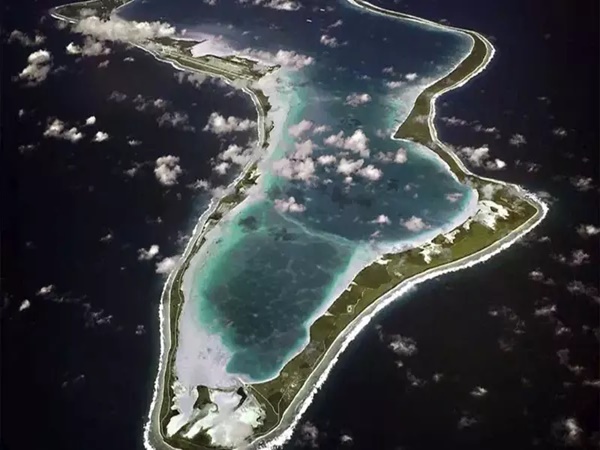
- 25 May 2025
Background:
The Chagos Archipelago, a remote group of over 60 islands in the Indian Ocean, has been at the center of a decades-long sovereignty dispute between the United Kingdom and Mauritius. The UK separated the islands from Mauritius in 1965, three years before Mauritius gained independence, and established the British Indian Ocean Territory (BIOT).
In the 1970s, the UK allowed the United States to build a military base on Diego Garcia, the largest island in the archipelago. The local Chagossian population was displaced, leading to international criticism and legal challenges.
Recent Development
In May 2025, the UK government, led by Prime Minister Keir Starmer, agreed to transfer sovereignty of the Chagos Islands to Mauritius. The agreement follows the 2019 advisory opinion of the International Court of Justice (ICJ) and United Nations resolutions urging the UK to end its colonial administration of the islands.
Key Provisions of the Treaty
- Sovereignty Transfer: Mauritius regains control over the Chagos Archipelago, including Diego Garcia.
- Lease Agreement: The UK will lease back Diego Garcia from Mauritius for 99 years, paying approximately:
- £101–136 million annually, totaling over £3 billion ($4 billion) across the lease term.
- Strategic Base Retained: The US-UK military base on Diego Garcia will continue operating. It is vital for counter-terrorism, surveillance, and regional stability in South Asia, the Middle East, and East Africa.
Geographical Significance
- The Chagos Islands lie about 500 km south of the Maldives and are part of the Chagos–Laccadive Ridge.
- It is the southernmost archipelago of the ridge and is located over 9,000 km southeast of the UK.
- Major islands: Salomon Islands, PerosBanhos, Diego Garcia.
Strategic and Military Importance
- Diego Garcia serves as a key US military outpost, supporting operations in multiple global regions.
- Described as an “almost indispensable platform”, the base has hosted long-range bombers and surveillance missions.
- Recently, it has been used for nuclear-capable bomber deployments and airstrike missions.
Local and International Reactions
- Mauritius: The agreement is celebrated as the completion of its decolonisation process. Chagossian exiles expressed joy over the chance to return to their ancestral lands.
- India: Strongly supported the sovereignty restoration, aligning with its principles on decolonisation, sovereignty, and territorial integrity. India views the resolution as a positive development for Indian Ocean regional stability.
Criticism and Concerns
- Some UK opposition leaders raised concerns about national security and financial burden on taxpayers.
- There are apprehensions about Mauritius’s close trade ties with China, though the deal includes safeguards against “malign influence.”
Acharya Charaka and Sage Sushruta
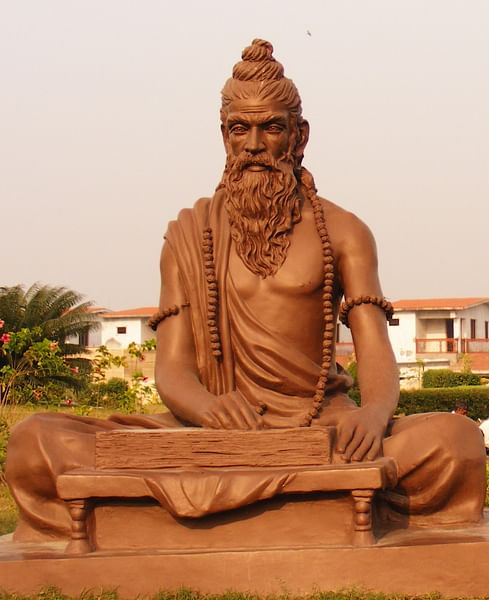
- 25 May 2025
In News:
The Vice-President of India recently inaugurated the statues of Acharya Charaka and Sage Sushruta at Raj Bhavan, Goa, to honour India's ancient medical heritage rooted in Ayurveda and surgery.
Acharya Charaka – Father of Indian Medicine
- Period: Circa 100 BCE – 200 CE
- Region: Associated with Taxila, under the Kushan emperor Kanishka.
- Key Contribution:
- Originally based on the Agnivesha Samhita, later revised and compiled by Charaka.
- Focused on internal medicine (Kayachikitsa).
- Discussed physiology, disease pathology, diagnosis, and therapeutic techniques.
- Introduced the concept of three doshas: Vata, Pitta, Kapha—the basis for diagnosis and treatment in Ayurveda.
- Provided early insights into embryology (Garbha Vigyan) and preventive healthcare.
- Stressed medical ethics, such as confidentiality, non-maleficence, and the moral duties of a physician.
- Emphasized the importance of diet, lifestyle, and environmental factors in health.
- The Charaka Samhita is part of the B?hatTrayi (Great Trilogy) of Ayurveda and was expanded by D??habala.
- Translated into Arabic, Latin, and other languages, reflecting its global medical influence.
Sage Sushruta – Father of Surgery
- Period: Circa 600–700 BCE
- Region:Practised in Kashi (Varanasi), likely under King Divodasa.
- Key Contribution:
- A pioneering treatise in surgery and medical science.
- Detailed 300+ surgical procedures and over 100 surgical instruments.
- Innovations include rhinoplasty (nasal reconstruction), skin grafts, cataract surgery, and caesarean sections.
- Explained fractures, dislocations, use of anaesthesia, and surgical training.
- Emphasized dissection-based anatomy, practical education, and simulation for surgical learning.
- Covered areas like public health, toxicology, pediatrics (Kaumarbhritya), and neonatal care.
- Integrated scientific observation, hygiene, and evidence-based methods long before modern systems.
Collective Significance:
- Both are part of the B?hatTrayi (Charaka Samhita, Sushruta Samhita, and Ashtanga Hridaya), forming the backbone of Ayurvedic literature.
- Their work laid the foundation for:
- Holistic medicine and ethical healthcare practice.
- Advanced understanding of human physiology and embryology.
- Scientific surgery, centuries ahead of global developments.
- Contributions to child health (Kaumarbhritya) and public hygiene.
- Their texts influenced Arab and European medicine through translations such as Kitab-i-Susrud.
Asian Productivity Organization (APO)
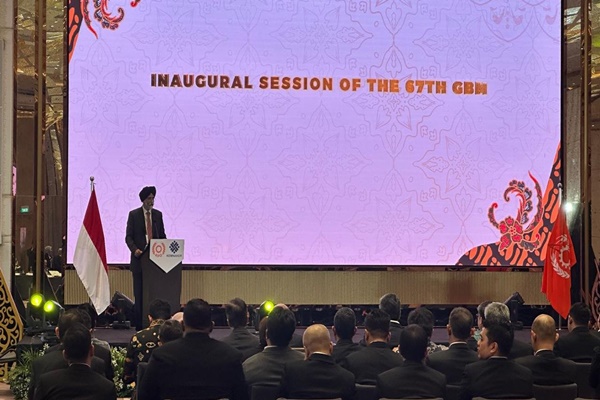
- 25 May 2025
In News:
India has officially taken over the Chairmanship of the Asian Productivity Organization (APO) for the 2025–26 term during the 67th Governing Body Meeting.
About APO:
- Type: Regional intergovernmental organization.
- Established:1961.
- Headquarters:Tokyo, Japan.
- Membership: 21 member economies from the Asia-Pacific region, including India, Japan, Iran, Indonesia, Vietnam, Philippines, South Korea, Singapore, and others.
- India:Founding member of the APO.
Key Objectives:
- Enhance productivity in member countries through mutual cooperation.
- Foster sustainable and inclusive socioeconomic development.
- Promote innovation-led growth across industry, agriculture, services, and public sectors.
Core Functions:
- Policy Advisory:Assists governments in designing national productivity strategies.
- Capacity Building:Conducts training programs, workshops, and research initiatives to boost productivity skills.
- Centres of Excellence:Facilitates innovation and best practices sharing among members.
- Green Productivity:Promotes environmentally sustainable growth models.
- Digital & Innovation Ecosystem:Encourages digital transformation and entrepreneurship through regional collaboration.
Organizational Structure:
- Governing Body:The apex decision-making entity; sets strategic direction and reviews performance annually.
- National Productivity Organizations (NPOs):Act as nodal agencies coordinating with the APO at the national level.
- Secretariat:Based in Tokyo, headed by a Secretary-General, manages daily operations.
Significance for India:
- India’s chairmanship marks a step forward in shaping regional productivity policies and highlights India’s commitment to sustainable development and economic cooperation in the Asia-Pacific.
Keezhadi Excavations
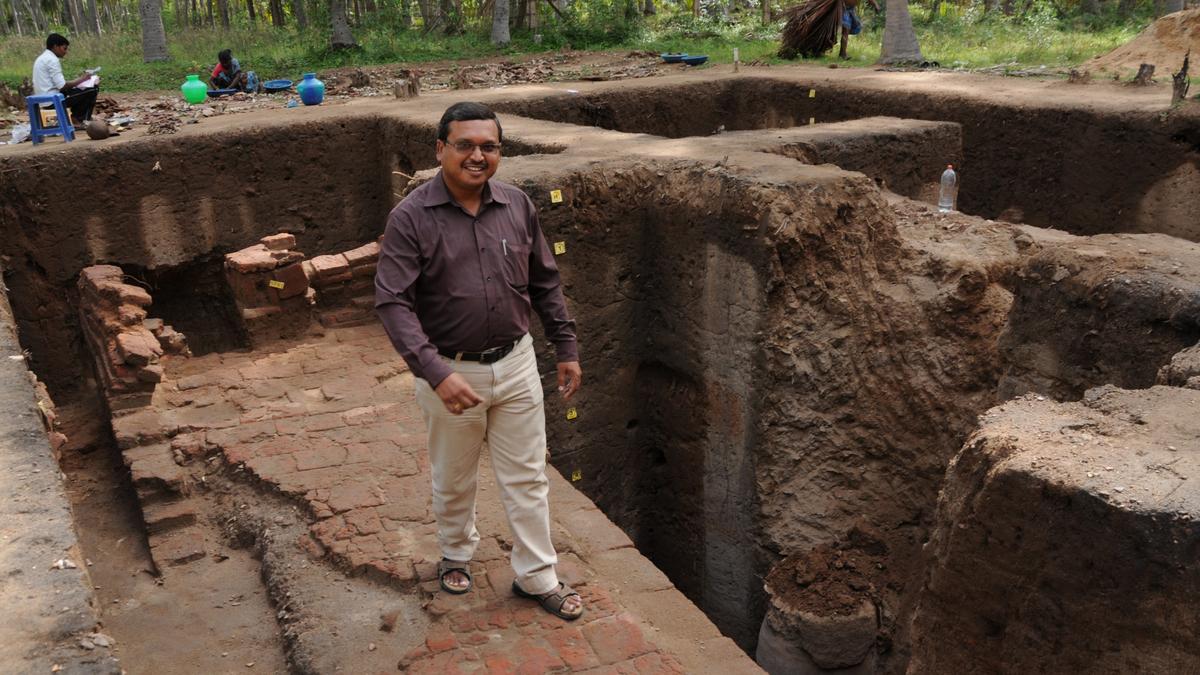
- 24 May 2025
In News:
The Keezhadi archaeological site, located near Madurai along the Vaigai River in Tamil Nadu’s Sivaganga district, is a major site of cultural and historical significance. It offers compelling evidence of an urban, literate, and industrialized Tamil civilization dating back to the Sangam Age.
Background and Discovery
- Discovered: Surveys in 2013–14; Excavations began in 2015.
- Excavating Agencies: Initially conducted by the Archaeological Survey of India (ASI) and later by the Tamil Nadu State Archaeology Department.
- Excavated Area: Only 1 out of 100 acres has been explored; over 4,000 artefacts recovered.
Significant Findings
- Carbon Dating (AMS) of charcoal: Indicates urban habitation existed by 200 BCE.
- Key Discoveries: Brick structures, ring wells, pottery with Tamil-Brahmi inscriptions, beads, graffiti, water storage facilities, and a large decorative pot unique to the region.
- Artefacts suggest links with North India and Western trade networks.
Cultural and Historical Significance
- Suggests early urbanization in South India, independent of northern influence.
- Supports theories of a pre-Sangam urban Tamil culture.
- Establishes Keezhadi as a centre of literacy, trade, and craftsmanship.
- Mention of nearby settlements like Manalur and Konthagai in Tamil classics such as Tiruvilayadal Puranam strengthens the site's literary links.
Sangam Period Context
- Spanned approximately 3rd century BCE to 3rd century CE.
- Tamil academies or ‘Sangams’ under the Pandya dynasty produced extensive literature.
- Notable texts: Tolkappiyam, Ettuthogai, Pattupattu, Padinenkilkanakku, and epics like Silappadikaram, Manimekalai, and CivakaCintamani.
- Literature depicts advanced socio-political systems, agriculture, trade, and maritime activities.
Current Issues and ASI Involvement
- The excavation report prepared by archaeologist Amarnath Ramakrishna (submitted in January 2023) has been returned by ASI for revision to ensure:
- Accurate period classification.
- Better stratigraphic and cartographic details.
- Consistency in scientific dating and layer mapping.
- ASI has flagged the need for clearer mapping, missing illustrations, and precise scientific justification for dating claims, especially for Period I (8th to 5th century BCE).
Controversy and Criticism
- Concerns have been raised over delays in publishing excavation reports.
- Critics highlight a perceived bias in the handling of southern archaeological sites, pointing to similar delays with the Adichanallur site report.
- Experts stress the importance of transparent and timely reporting to enhance historical understanding.
National Centre for Polar and Ocean Research (NCPOR)
- 24 May 2025
In News:
To mark its 25th anniversary, the Union Minister of Earth Sciences inaugurated two landmark facilities—Polar Bhavan and Sagar Bhavan—at the NCPOR campus in Vasco da Gama, Goa.
About NCPOR
- Established: 25 May 1998 (originally as the National Centre for Antarctic and Ocean Research – NCAOR).
- Status: Autonomous R&D institute under the Ministry of Earth Sciences (MoES).
- Headquarters: Vasco da Gama, Goa.
- Governing Body: Includes 13 members; the Secretary of MoES serves as the ex-officio Chairman.
Mandate and Key Functions
- Polar Research Leadership:
- Manages India's scientific stations:
- Antarctica: Maitri and Bharati
- Arctic: Himadri
- Himalayas: Himansh
- Coordinates India’s Antarctic, Arctic, Southern Ocean, and Himalayan expeditions.
- Manages India's scientific stations:
- Oceanic Research:
- Implements projects under the Deep Ocean Mission.
- Conducts Exclusive Economic Zone (EEZ) mapping and continental shelf surveys.
- Explores deep-sea minerals, gas hydrates, and metal sulphides.
- Policy Implementation:
- Supports India’s Arctic Policy (2022) and Indian Antarctic Act (2022):
- Antarctic Act: Provides legal framework for governance and environmental protection via CAG-EP (Committee on Antarctic Governance and Environmental Protection).
- Arctic Policy: Based on six pillars—science, environment, development, connectivity, governance, and capacity building.
- Supports India’s Arctic Policy (2022) and Indian Antarctic Act (2022):
- Scientific Logistics and Collaboration:
- Operates research vessels (e.g., ORV Sagar Kanya).
- Engages in international polar networks and climate monitoring programs.
- Maintains India’s Antarctic Data Centre and conducts climate modelling.
New Facilities at NCPOR
Polar Bhavan:
- Area: 11,378 sq. m | Cost: ?55 crore
- Features:
- Advanced polar and ocean research laboratories
- Science on Sphere (SOS) 3D visualization platform
- Accommodation for 55 scientists
- Conference halls, library
- Home to India’s first Polar and Ocean Museum
Sagar Bhavan:
- Area: 1,772 sq. m | Cost: ?13 crore
- Features:
- Two -30°C ice core laboratories
- +4°C storage units for biological and sediment samples
- Class 1000 clean room for trace metal and isotope studies
Significance for India
- Strengthens India’s strategic presence in polar regions.
- Enhances research capacity in ocean and climate sciences.
- Enables India to fulfill international obligations under polar treaties.
- Promotes science diplomacy and public outreach through the upcoming museum.
Guttala Inscription
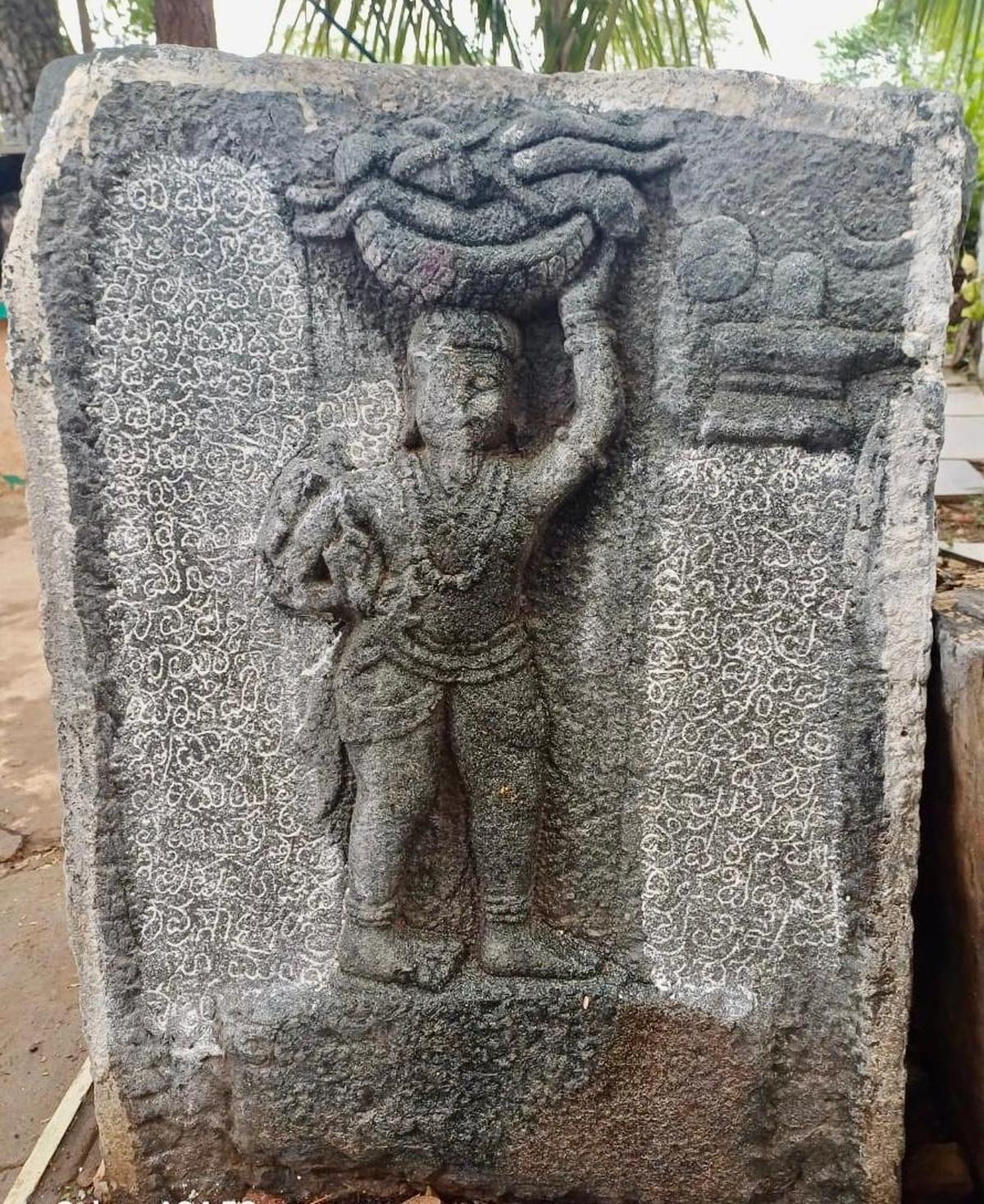
- 24 May 2025
In News:
A rare 16th-century sculptural inscription discovered near the Chandrashekara temple in Guttala village, Haveri district, Karnataka, marks the earliest known epigraphic evidence in India of a large-scale humanitarian disaster caused by a natural calamity—a drought (bara) that claimed 6,307 lives in 1539 CE (Saka 1461, August 18).
Key Features of the Inscription:
- Language and Script: Kannada.
- Medium: Stone slab.
- Depiction: A sculpture showing MarulaihOdeya, the son of NanidevaOdeya, carrying a basket containing dead bodies—representing his act of burying the deceased to earn religious merit for the regional ruler, TimmarasaSvami.
- Religious Context: The burial was conducted after paying homage to Basaveshwara, reflecting the spiritual and ritualistic practices of the time.
- Territorial Reference: Mentions the term "seeme", indicating the existence of local administrative divisions.
Significance:
- First explicit historical record in India of deaths caused by a natural disaster, making it an important source for disaster history and epigraphic heritage.
- Offers textual and visual representation of community response to drought.
- Provides insights into local governance, religious customs, and socio-economic conditions of 16th-century Karnataka.
- Adds depth to the study of historical climate events, with potential to track past climatic patterns and their impact on populations.
Broader Context:
- Inscriptions in India, typically engraved on stone or metal, serve as valuable primary sources for understanding royal decrees, battles, donations, and societal events.
- Other notable Karnataka inscriptions include:
- Maski Edict (3rd Century BCE) – First mention of Emperor Ashoka as "Devanampriya".
- Halmidi Inscription (c. 450 CE) – Oldest Kannada inscription referencing Kadamba king Kakusthavarma.
- Aihole Inscription (634 CE) – Chronicles the military achievements of Pulakeshin II.
Recent Epigraphic Developments:
- The Epigraphy Branch of the Archaeological Survey of India (ASI) discovered and documented over 1,000 inscriptions across India during 2024–25, including more than 100 new finds this year alone.
- These discoveries reinforce the role of epigraphy in reconstructing Indian history, especially in areas lacking detailed literary sources.
Sagar Mein Samman (SMS) Initiative
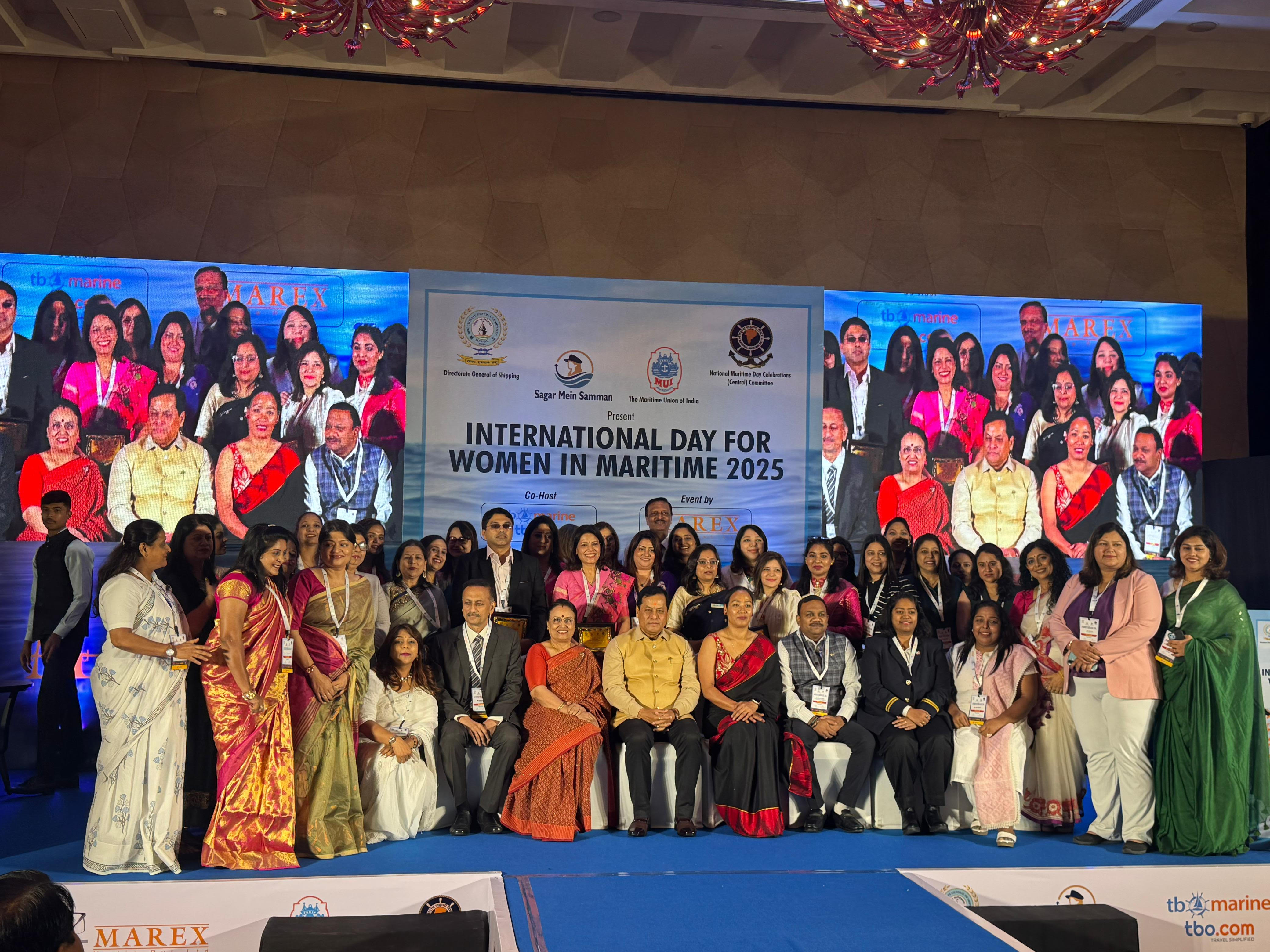
- 24 May 2025
In News:
The Government of India launched the Sagar Mein Samman (SMS) initiative on International Day for Women in Maritime (18 May), observed by the International Maritime Organization (IMO). The 2025 theme is “An Ocean of Opportunities for Women.”
About the Initiative:
- Objective: To build a gender-equitable maritime workforce by promoting inclusivity, safety, skill development, leadership, and equal opportunities for women across seafaring and shore-based maritime operations.
- Alignment:
- IMO’s gender inclusion mandate.
- UN SDG-5 (Gender Equality).
- India’s Diversity, Equity, and Inclusion (DEI) framework.
- Maritime India Vision 2030 and Maritime Amrit Kaal Vision 2047.
Key Features:
- Structured Policy Roadmap covering:
- Planning & strategy.
- Training & development.
- Research & innovation.
- Governance & compliance.
- Outreach & communications.
- Financial Support: ~2,989 women received assistance since 2014.
- Incentives for Industry: Shipping companies are incentivized to hire women; scholarships support training.
Achievements:
- 649% growth in women seafarers:From 341 in 2014 to 2,557 in 2024.
- Rise in financial aid beneficiaries:From 45 in 2014-15 to 732 in 2024-25.
- Female representation target:12% in technical maritime roles by 2030.
- Increasing employment of Indian women on Indian and foreign-flagged ships.
Recognition and Outreach:
- Women Leaders Honoured: Ten outstanding women were felicitated for their contributions to maritime.
- Focus on awareness campaigns, onshore job facilitation, and leadership opportunities.
Significance:
- Aims to dismantle gender-based barriers and promote inclusive economic growth.
- Reinforces India’s commitment to gender equity as a strategic enabler of maritime sustainability and national development.
- Aligns with global maritime norms and India’s broader commitment to SDGs.
Other Key Maritime Initiatives:
- SAGAR (Security and Growth for All in the Region): Maritime security and regional cooperation.
- Maritime India Vision 2030: Long-term strategy for port-led development and gender inclusion.
Financial Fraud Risk Indicator (FRI)
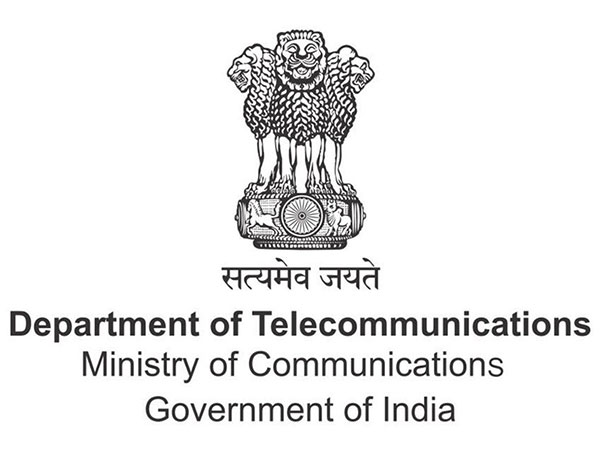
- 23 May 2025
In News:
The Department of Telecommunications (DoT), under the Ministry of Communications, has launched the Financial Fraud Risk Indicator (FRI) to counter the growing menace of cyber-enabled financial frauds, especially those involving mobile numbers.
What is FRI?
The Financial Fraud Risk Indicator (FRI) is a multi-dimensional analytical tool developed under the Digital Intelligence Platform (DIP). It classifies mobile numbers based on their risk level—Medium, High, or Very High—of being associated with financial fraud.
Purpose:
- To provide advance risk intelligence to financial institutions.
- To serve as a pre-transaction validation tool, flagging suspicious mobile numbers involved in digital transactions.
How It Works:
- The classification is based on data inputs from:
- National Cybercrime Reporting Portal (NCRP)
- DoT’s Chakshu facility
- Intelligence from banks and NBFCs
- Risk-tagged mobile numbers are flagged in real-time to stakeholders, including banks, UPI platforms, and payment service providers.
- Acts as a cyber shield, preventing fraudulent digital payments before they occur.
Implementation and Use Cases:
- PhonePe, an early adopter, uses FRI to:
- Block transactions involving "Very High" risk numbers.
- Warn users during transactions with "Medium" risk numbers via its "PhonePe Protect" feature.
- Other UPI giants like Google Pay and Paytm (collectively handling 90% of UPI traffic) are integrating FRI-based alerts.
- Banks have begun introducing transaction delays and alerts to curb cyber fraud using FRI data.
Why FRI is Crucial:
- India lost over ?3,207 crore to approximately 5.82 lakh cyber fraud cases between FY 2020–2024.
- The short operational window of fraudulent mobile numbers makes advance detection vital.
- Common cyber frauds include:KYC scams, UPI frauds, investment scams, digital arrest frauds, and get-rich-quick schemes.
Supporting Mechanisms:
- Digital Intelligence Platform (DIP): Facilitates real-time intelligence sharing between law enforcement and financial institutions.
- Chakshu on Sanchar Saathi: Enables citizens to report suspicious communication.
- Citizen Financial Cyber Fraud Reporting System: Part of I4C, it allows real-time fraud reporting via the 1930 helpline or cybercrime.gov.in.
- E-Zero FIR: Automatically registers FIRs for cybercrime complaints involving more than ?10 lakh.
- Mulehunter (RBI): AI-based tool to identify and track money mule accounts.
Blue Talks
- 23 May 2025
In News:
Recently, India successfully hosted the Second Blue Talks in New Delhi, organised by the Ministry of Earth Sciences (MoES) in collaboration with the Embassies of France and Costa Rica. This high-level consultation platform aims to contribute to the upcoming 3rd United Nations Ocean Conference (UNOC3) scheduled from June 9–13, 2025 in Nice, France.
About Blue Talks
- Purpose: A multilateral platform for dialogue among governments, scientists, civil society, and stakeholders to promote the sustainable use of ocean resources and accelerate progress on Sustainable Development Goal (SDG) 14 – Life Below Water.
- Key Objectives:
- Promote marine sustainability, research, and education.
- Facilitate global scientific cooperation on ocean-related challenges.
- Share best practices and strategic knowledge tools.
- Strengthen consensus and policy alignment in the lead-up to UNOC3.
- Thematic Focus Areas of 2nd Blue Talks:
- Conservation and Restoration of Marine and Coastal Ecosystems.
- Scientific Cooperation, Marine Technology, and Ocean Literacy.
- Reduction of Marine Pollution from land and sea-based sources.
- Interlinkages among Oceans, Climate, and Biodiversity.
Highlights of the Event:
- White Paper Released: Transforming India’s Blue Economy: Investment, Innovation, and Sustainable Growth.
- Aim: To align government action, mobilize investments, and promote sustainable ocean development.
- Notable Themes:
- Mapping of marine resources.
- Promotion of offshore wind and deep-sea exploration.
- Technology and data-sharing gaps.
- Women-led seaweed farming, smart ports, and green ship recycling as success models.
About the 3rd United Nations Ocean Conference (UNOC3)
Feature Details
Host Countries France and Costa Rica
Venue & Dates Nice, France; June 9–13, 2025
Organiser United Nations
Theme “Accelerating action and mobilizing all actors to conserve and
sustainably use the ocean.”
Goal Strengthen global efforts under SDG 14
Key Outcome Nice Ocean Action Plan – a non-binding but politically influential declaration.
Focus Areas Marine conservation, pollution reduction, global partnerships, and
BBNJ ratification.
UN Ocean Conference Series
- 1st UNOC (2017): New York, USA – Raised awareness and voluntary commitments.
- 2nd UNOC (2022): Lisbon, Portugal – Focused on innovation and science-driven approaches.
- 3rd UNOC (2025): Nice, France – Aims to intensify action and collaboration.
India’s Blue Economy Vision
- India's Blue Economy is a critical pillar of the Viksit Bharat 2047 vision.
- MoES is the nodal agency for national ocean governance.
- The white paper integrates efforts from 25 ministries and all coastal states/UTs.
- Builds on India’s G20 Presidency and Chennai High-Level Principles for a Sustainable and Resilient Blue Economy.
International Booker Prize 2025
- 23 May 2025
In News:
In a historic win, Banu Mushtaq, a prominent Kannada writer, advocate, and activist, became the first Indian author writing in Kannada to win the International Booker Prize 2025 for her short story collection Heart Lamp. The book was translated into English by Deepa Bhasthi, who also became the first Indian translator to win this prestigious award.
About the International Booker Prize
- Established: 2005 by the Booker Prize Foundation, UK.
- Awarded: Annually.
- Purpose: To honour the best work of fiction translated into English, regardless of the original language or nationality of the author.
- Prize Amount: £50,000, shared equally between the author and the translator.
- Shortlisted nominees (authors and translators) receive £2,500 each.
- Focus: Unlike the Booker Prize, which honours original English-language works, the International Booker Prize exclusively celebrates translated fiction, highlighting the importance of translators in global literature.
Key Features
- Celebrates literary excellence, cultural richness, and the art of translation.
- Initially biennial (2005–2015), it became an annual award in 2016.
- Books must be translated into English and published in the UK or Ireland.
India and the International Booker Prize
Year Author Work Language Translator
2022 Geetanjali Shree Tomb of Sand Hindi Daisy Rockwell
2025 Banu Mushtaq Heart Lamp Kannada Deepa Bhasthi
About Banu Mushtaq
- Born: April 3, 1948, in Hassan, Karnataka.
- Professions: Advocate, journalist, feminist writer, women’s rights activist, and former municipal councillor.
- Affiliation: Prominent figure in the Bandaya movement, known for protest literature in Kannada addressing social injustices.
- Journalistic Background: Reported for LankeshPatrike (1981–1990) under the mentorship of P. Lankesh.
Literary Contributions
- Started writing: In 1974; first story published in Prajamatha.
- Themes: Focuses on gender justice, religious identity, caste oppression, and female autonomy.
Heart Lamp: The 2025 Winning Work
- Genre: Short story collection comprising 12 stories written between 1990 and 2023.
- Content: Explores the lives of ordinary South Indian Muslim women, addressing themes like patriarchy, faith, family roles, and self-determination.
- Significance:
- First short story collection to win the International Booker Prize.
- First Kannada-language work to win.
- First win for Indian translator Deepa Bhasthi.
Other Notable Works by Banu Mushtaq
- Benki Male (1999): Awarded the Karnataka Sahitya Academy Award.
- HaseenaMattuItaraKathegalu (2015): Translated into English as Haseena and Other Stories.
- Black Cobra (Short Story): Adapted into the award-winning film Hasina by Girish Kasaravalli.
India’s Primary Forest Loss: 2024 Insights and Conservation Measures
- 23 May 2025
In News:
According to the latest 2024 data by Global Forest Watch (GFW) and the University of Maryland, India lost 18,200 hectares of primary forest in 2024, a slight increase from 17,700 hectares in 2023.
Primary forests are mature, humid tropical forests that have not been entirely cleared or regrown in recent history.
Key Highlights:
Globally, 6.7 million hectares of tropical primary forest were lost in 2024—almost double the loss in 2023.
For the first time in over two decades, wildfires surpassed agriculture as the leading driver of tropical forest loss, accounting for nearly 50% of the global total. This spike is largely attributed to climate change and El Niño, which intensified heatwaves and droughts.
Major Global Trends (2024)
- Brazil: Accounted for 42% of global tropical forest loss.
- Bolivia: Recorded a 200% rise in forest loss, overtaking the Democratic Republic of Congo.
- Fires: Emerged as the dominant cause of forest destruction globally.
India: Forest Cover Trends and Data (2001–2024)
- India lost 2.31 million hectares of tree cover since 2001—equivalent to a 7.1% decrease and 1.29 gigatonnes of CO? equivalent emissions.
- Humid primary forest loss between 2002 and 2024 stood at 3,48,000 hectares (5.4%), accounting for 15% of the total tree cover loss.
- Annual primary forest loss (in hectares):
- 2024: 18,200
- 2023: 17,700
- 2022: 16,900
- 2021: 18,300
- 2020: 17,000
- 2019: 14,500
2024 Indian Forest Loss Patterns
- Overall Tree Cover Loss: Decreased by 6.9% compared to 2023.
- Humid Primary Forest Loss: Rose by 5.9% in 2024.
- Fire-Induced Forest Loss: Increased to 950 hectares (a 158% rise from 2023).
- Regional Hotspots: Northeastern states such as Assam, Nagaland, and Mizoram, driven by shifting cultivation, logging, and agricultural expansion.
According to the UN Food and Agriculture Organisation (FAO), India had the second-highest rate of deforestation globally from 2015 to 2020, with an annual forest loss of 6.68 lakh hectares.
India’s Forest Conservation Measures
Policy and Legal Framework
- Forest Conservation Act, 1980 (Amended 2023): Regulates diversion of forest land for non-forest purposes. Amendments aim to streamline processes while raising concerns about potential dilution of protections.
- National Forest Policy, 1988: Advocates maintaining 33% of geographical area under forest/tree cover.
- Compensatory Afforestation Fund Act (CAMPA), 2016: Ensures reforestation and eco-restoration using funds from forest land diversion.
Afforestation and Reforestation
- Green India Mission: Under the National Action Plan on Climate Change (NAPCC); focuses on increasing forest cover and ecosystem resilience.
- State Initiatives: Example – Uttar Pradesh plans to plant 35 crore saplings in 2025.
Community Participation
- Joint Forest Management (JFM): Encourages community–forest department collaboration.
- Forest Rights Act, 2006: Legally empowers forest-dwelling communities to manage and conserve forests.
Technological Tools
- Satellite Monitoring: Real-time surveillance of forest cover and illegal activities.
- Mobile Apps: Tools like ‘My Plants’ facilitate public engagement in plantation efforts.
International Partnerships
- Forest-PLUS 3.0: A joint initiative with the United States, promoting sustainable forestry and climate resilience.
About Global Forest Watch (GFW)
- A project by the World Resources Institute (WRI), established in 1997.
- An open-access platform offering near real-time forest monitoring data.
- Users: Governments, NGOs, academia, journalists, and the public.
- Technology: Uses Landsat satellite imagery and region-specific algorithms to track forest change.
Mizoram Becomes India’s First Fully Literate State
- 22 May 2025
In News:
Mizoram has officially become India’s first fully literate state, attaining a literacy rate of 98.2% according to the Periodic Labour Force Survey (PLFS) 2023–24. This achievement surpasses the 95% threshold defined by the Ministry of Education to classify a region as fully literate.
Definition of Literacy
- As per the Office of the Registrar General of India, a literate person is someone aged 7 years or above who can read and write with understanding in any language.
- Under NEP 2020 and in alignment with SDG 4.6, the definition has expanded to include the ability to read, write, and compute with comprehension, and includes digital and financial literacy and critical life skills.
India’s Literacy Landscape (2023–24)
- National Literacy Rate: 80.9% (age 7+)
- Mizoram: 98.2% (Highest; now declared fully literate)
- Ladakh: First UT to achieve full functional literacy under ULLAS
- Lowest Literacy Rates: Andhra Pradesh (72.6%), Bihar (74.3%)
ULLAS – Nav Bharat SaakshartaKaryakram
The achievement is attributed to the ULLAS (Understanding Lifelong Learning for All in Society)programme, a centrally sponsored scheme running from 2022 to 2027, aligned with the National Education Policy (NEP) 2020.
Key Features:
- Target Group: Adults aged 15 years and above who missed formal education.
- Implementation: Based on volunteerism and the principle of Kartavya Bodh (sense of duty).
- Components:
- Foundational Literacy and Numeracy
- Critical Life Skills (including digital, legal, financial literacy)
- Basic Education
- Vocational Skills Development
- Continuing Education
- Assessment: Foundational Literacy and Numeracy Assessment Test (FLNAT) is conducted periodically for certification.
- Digital Tools: Resources provided through the DIKSHA platform and the ULLAS mobile/web portal in regional languages.
What is Functional Literacy?
Functional literacy refers to an individual's ability to apply reading, writing, and numeracy in daily tasks, enabling personal development and community participation.
Other Key Educational Initiatives
- PM SHRI Schools
- Sarva Shiksha Abhiyan
- PRAGYATA (Digital Education)
- Mid-Day Meal Scheme
- BetiBachaoBetiPadhao
- National Programme on Technology Enhanced Learning (NPTEL)
e-Zero FIR System
- 22 May 2025
IN News:
In a significant stride toward modernizing cybercrime response mechanisms, Union Home Minister Amit Shah unveiled the e-Zero FIR system. This initiative ensures that complaints involving financial cyber frauds exceeding ?10 lakh—submitted via the 1930 helpline or the National Cybercrime Reporting Portal (NCRP)—are automatically registered as FIRs, eliminating the need for the complainant to visit a police station.
Objective and Operational Rollout
The project, developed under the guidance of the Indian Cyber Crime Coordination Centre (I4C), is aimed at accelerating the registration and investigation of high-value cybercrime cases.
- Pilot Implementation: Initiated in Delhi as a testbed.
- National Expansion: Plans are underway to replicate the model across India.
Concept of Zero FIR
The Zero FIR mechanism permits the filing of an FIR at any police station, regardless of the location of the offence. This removes jurisdictional constraints and ensures prompt registration of cases.
- Legal Backing: Incorporated under Section 173 of the BharatiyaNagarik Suraksha Sanhita (BNSS), 2023.
- Historical Context: Introduced following recommendations from the Justice Verma Committee post the 2012 Nirbhaya case, to address delays caused by jurisdictional rigidities.
Salient Features of Zero FIR
- No Jurisdictional Restrictions: Victims may file complaints at any police station or via electronic means.
- Initial Registration: The complaint is logged as a Zero FIR and then forwarded to the relevant jurisdictional police unit for investigation.
- Primary Goal: To facilitate timely intervention and prevent procedural delays for the complainant.
Integration with National Digital Systems
To enhance responsiveness and coordination, the e-Zero FIR system integrates with several key digital platforms:
- NCRP (National Cybercrime Reporting Portal) – Administered by I4C.
- Delhi Police’s e-FIR mechanism
- Crime and Criminal Tracking Network and Systems (CCTNS) – Maintained by theNational Crime Records Bureau (NCRB).
This digital infrastructure enables real-time complaint registration at Delhi’s e-Crime Police Station, which then redirects the FIR to the appropriate jurisdiction.
Alignment with New Criminal Legislation
The initiative is fully aligned with India’s revised criminal justice framework effective from July 1, 2024, which includes:
- Bharatiya Nyaya Sanhita (BNS), 2023
- BharatiyaNagarik Suraksha Sanhita (BNSS), 2023
- BharatiyaSakshyaAdhiniyam (BSA), 2023
Under the BNSS provisions:
- Mandatory Zero FIR registration under Section 173.
- Victim must visit a cybercrime police station within 72 hours to convert a Zero FIR into a formal FIR.
- Free copy of FIR to be provided to the complainant, ensuring transparency and empowering victims.
Vision for a Cyber-Secure India
The launch of the e-Zero FIR system underscores the government’s resolve to build a secure and digitally empowered India by:
- Ensuring easy and immediate access to justice for victims of cyber fraud.
- Facilitating quick action by investigative agencies without procedural bottlenecks.
- Strengthening citizen trust through digital governance and victim-friendly policing.
Elimination of Trachoma as a Public Health Problem
- 21 May 2025
In News:
At the 78th World Health Assembly in Geneva (May 2025), the World Health Organization (WHO) officially recognized Papua New Guinea (PNG) and India for eliminating trachoma as a public health problem. This marks a significant milestone in global efforts to combat neglected tropical diseases (NTDs).
What is Trachoma?
- Cause: Bacterial infection by Chlamydia trachomatis
- Transmission:
- Direct contact with infected eye/nasal discharges (via hands, clothes, bedding)
- Flies that have come into contact with infected discharges
- Reservoir: Predominantly spread among children in endemic regions
- Symptoms:
- Early: Red eyes, discharge, pain, light sensitivity
- Advanced:Trachomatous trichiasis – inward-turning eyelashes causing corneal damage and irreversible blindness
Risk Factors & Epidemiology:
- Major Risk Factors:
- Poor hygiene and sanitation
- Overcrowded housing conditions
- Limited access to clean water
- Gender Disparity: Women are 4 times more affected due to caregiving-related exposure
- Global Burden (as of 2023):
- Endemic in 38 countries
- Affects 1.9 million people with visual impairment/blindness
- Over 130,000 surgeries and 32.9 million antibiotic treatments administered globally in 2023
Trachoma Elimination in Papua New Guinea (2025):
- Validation: Based on detailed epidemiological data and surveillance (2015–2020)
- Key Findings:
- Presence of mild active trachoma in children but negligible trichiasis
- No need for mass drug administration or surgical interventions
- Intervention Strategy:Emphasis on surveillance, community-level assessments, andtargeted response
- Support & Partnerships:WHO, Fred Hollows Foundation, Australian DFAT, PNG Eye Care, London School of Hygiene & Tropical Medicine, among others
- Significance: First NTD eliminated in PNG; part of WHO’s NTD Road Map 2021–2030
Trachoma Elimination in India (Certified in May 2025):
- Timeline:
- Declared trachoma-free in October 2023
- WHO Certification in May 2025
- India’s Strategy:
- Implemented active surveillance through NPCBVI since 2019
- National Trichiasis Survey (2021–2024) covered 200 districts
- Regional Achievement:India is the third country in WHO South-East Asia Region, after Nepal and Myanmar, to eliminate trachoma
Global Status of Trachoma Elimination:
- Countries Validated for Elimination: 22 countries including India, Nepal, China, Pakistan, Iran, Morocco, Vietnam, Mauritania, and PNG
- Part of Broader NTD Goals: WHO supports member countries to eliminate at least one NTD under the 2021–2030 roadmap
58thJnanpith Award Conferred
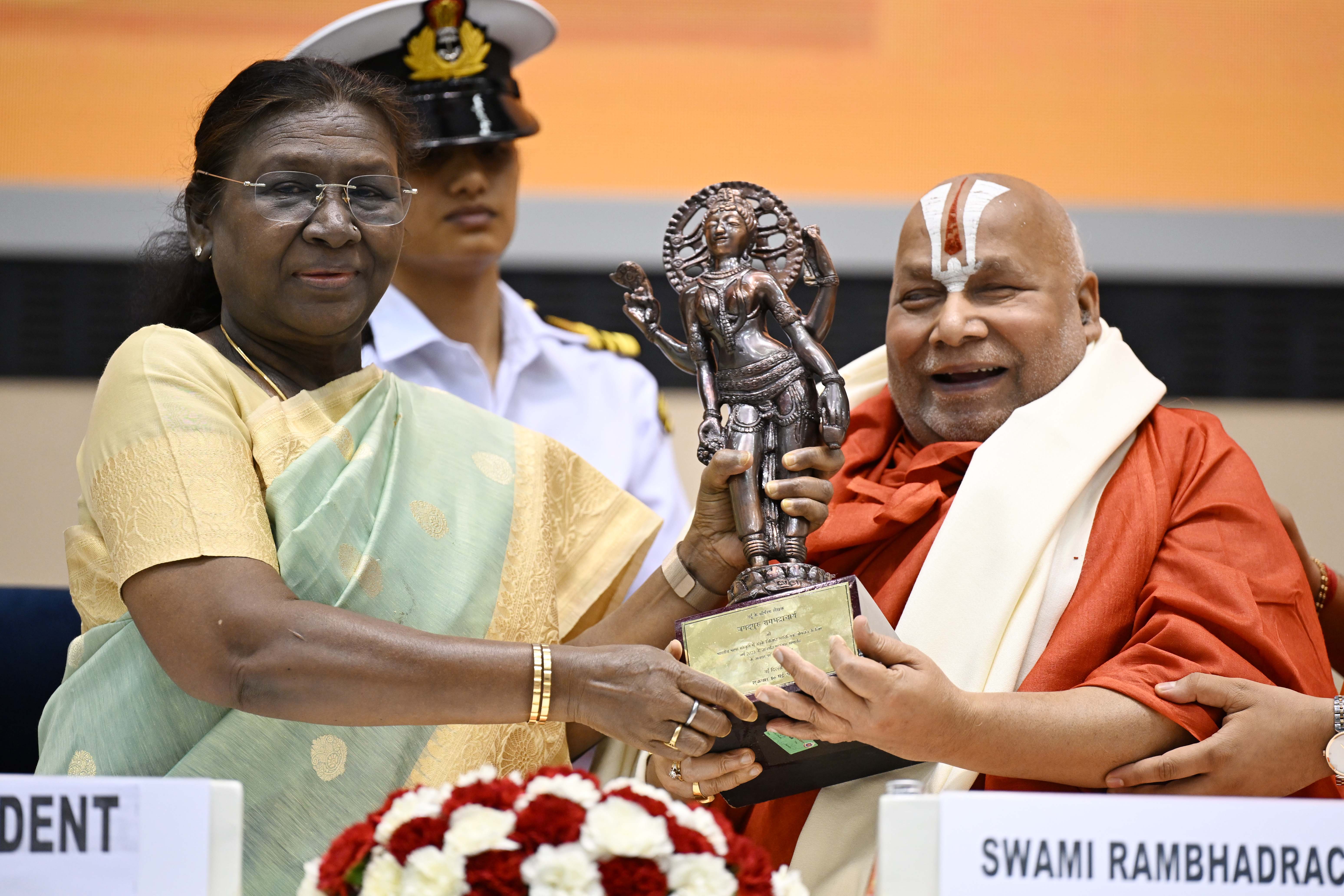
- 20 May 2025
In News:
Recently, the President of India, presented the 58thJnanpith Award to renowned Sanskrit scholar Jagadguru Rambhadracharya Ji at a function held at Vigyan Bhavan, New Delhi. She also extended congratulations to celebrated writer Gulzar, a fellow recipient who could not attend due to health reasons.
About Jagadguru Rambhadracharya
- A prominent Sanskrit scholar, spiritual leader, poet, and educationist.
- Despite being visually challenged, he has made significant literary and social contributions.
- Recognized for his multi-faceted excellence in Sanskrit literature and devotion to nation-building through literary and cultural service.
Highlights from the President’s Address
- Emphasized that literature unites and awakens society, playing a key role in movements from 19th-century social reform to the freedom struggle.
- Referenced the literary legacy of figures like Valmiki, Vyas, Kalidas, and Rabindranath Tagore as embodiments of India’s civilizational essence.
- Praised the BharatiyaJnanpith Trust for honoring literary excellence since 1965 across various Indian languages.
- Celebrated the contributions of women Jnanpith awardees such as Ashapurna Devi, Amrita Pritam, Mahasweta Devi, and Pratibha Ray, urging young women to draw inspiration from their works.
About the Jnanpith Award
Feature Details
Established 1961
First Awarded 1965 to Malayalam poet G. SankaraKurup for Odakkuzhal
OrganisedBy BharatiyaJnanpith, a literary and cultural organization founded in 1944
Eligibility Indian citizens writing in Schedule VIII languages of the Constitution or
in English
Award Components Cash prize, citation, and a bronze replica of Vagdevi (Saraswati)
Nature Annual, but may be withheld if no suitable candidate is found
One-Time Recognition A writer can receive the award only once
Language Rotation Rule A language that has received the award is ineligible for the next two years
New Calcedonia
- 20 May 2025
In News:
For decades, New Caledonia, a French island territory of approximately 2,71,400 people in the southwest Pacific Ocean, has been on a complex journey regarding its status.
Geography and Strategic Significance
- Location: South Pacific Ocean, ~1,500 km east of Australia.
- Status: French overseas territory; part of EU’s Overseas Countries and Territories (OCTs), but outside the Euro and Schengen zones.
- Key Resources: Holds ~25% of the world’s nickel reserves.
- UNESCO Heritage: Lagoons and coral reefs recognized in 2008.
- Capital: Nouméa
Demographics (2019 Census)
- Population: ~2,71,400
- Indigenous Kanaks: ~39%
- Others: European, Polynesian, Vietnamese, Indonesian, Algerian descent.
Historical Timeline
- 1853: France annexes the islands; becomes a penal colony.
- 1957: French citizenship granted to all residents.
- 1980s: Ethnic tensions escalate; near civil war.
- 1988: Matignon Agreements signed.
- 1998: Nouméa Accord grants wide autonomy, New Caledonian citizenship, and promised three referendums on independence.
Independence Referendums
- 2018 & 2020: Majority voted against independence.
- 2021: Final vote boycotted by pro-independence groups (FLNKS) citing COVID-19 and customary mourning; outcome rejected as illegitimate.
Recent Crisis (2024)
- Trigger: French proposal to “unfreeze” electoral rolls to include newer residents.
- Consequence: Violent riots, 14 deaths, and widespread unrest.
- Talks Collapse: May 2024 negotiations failed due to rejection of the “sovereignty in partnership” proposal by loyalists.
Sovereignty-in-Partnership Proposal
- Envisioned enhanced self-rule with international recognition.
- Power would be delegated back to France in certain domains (e.g., judiciary).
- Rejected by loyalists as “disguised independence”.
Alternate Proposal by Loyalists
- Partition Model:
- Pro-independence North & Loyalty Islands – special status
- Wealthier, loyalist South Province – remain French
- Rejected by all sides:
- France – violates territorial integrity.
- FLNKS – compared it to apartheid.
What Lies Ahead?
- Provincial Elections due by November 2025.
- No political consensus on institutional status raises concerns of prolonged instability.
Operation Olivia
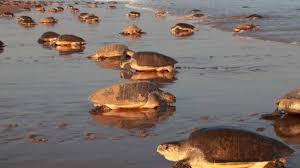
- 20 May 2025
In News:
Operation Olivia is an annual conservation initiative launched by the Indian Coast Guard (ICG) in collaboration with the Odisha Forest Department, aimed at protecting the nesting habitats of Olive Ridley turtles along the Odisha coastline. It is conducted from November to May, aligning with the turtles’ mass nesting (Arribada) season.
Key Features of Operation Olivia (as of 2025)
- In February 2025, a record 6.98 lakh Olive Ridley turtles nested at the Rushikulya river mouth.
- Since inception, the ICG has conducted:
- 5,387 surface patrol sorties
- 1,768 aerial surveillance missions
- 366 boats involved in illegal fishing were detained, ensuring effective protection of the turtles' breeding grounds.
- 225 ship days and 388 aircraft hours were dedicated to Operation Olivia during a recent season.
- Focus areas include Gahirmatha Beach, Rushikulya, and Dhamra river mouths in Odisha—home to over 8 lakh nesting turtles annually.
Conservation Measures
- Fishing ban within 20 km of nesting coasts (Devi, Dhamra, and Rushikulya rivers), enforced under:
- Orissa Marine Fishing Regulation Act, 1982
- Wildlife Protection Act, 1972
- Promotion of Turtle Excluder Devices (TEDs) to reduce accidental bycatch.
- Community awareness campaigns and MoUs with NGOs to ensure local participation and education on marine conservation.
About Olive Ridley Turtles
- Scientific Name:Lepidochelysolivacea
- IUCN Status: Vulnerable
- Legal Protection:
- Schedule I, Wildlife Protection Act, 1972
- Appendix I, CITES
- Habitat: Warm tropical waters of the Pacific, Atlantic, and Indian Oceans
- India’s Nesting Sites:
- Gahirmatha Marine Sanctuary – world’s largest rookery
- Rushikulya and Devi river mouths in Odisha
- Unique Feature: Mass nesting behavior known as Arribada, where thousands of females lay eggs on the same beach.
- Behavior: Omnivorous and solitary; migrate thousands of kilometers annually between feeding and breeding grounds.
Viksit Krishi Sankalp Abhiyan
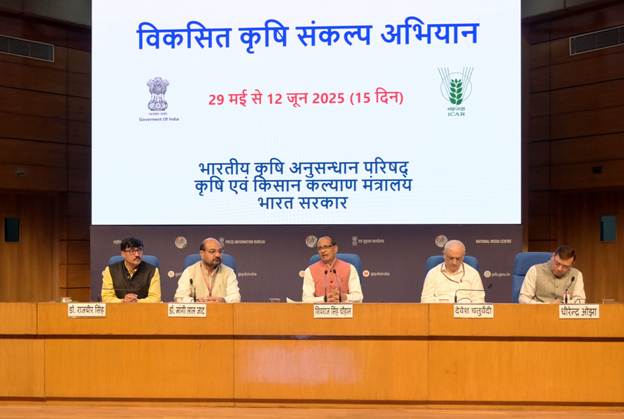
- 20 May 2025
In News:
The Viksit Krishi Sankalp Abhiyan is a nationwide agricultural outreach and awareness initiative being launched by the Ministry of Agriculture & Farmers Welfare from May 29 to June 12, 2025.
The campaign is part of the government’s vision of “Viksit Bharat” and seeks to empower farmers through the dissemination of modern agricultural knowledge, technologies, and innovations across India.
Key Objectives and Vision
- Enhance agricultural productivity, improve farmer incomes, and ensure national food security.
- Promote modern, sustainable, and scientific farming practices aligned with the Prime Minister’s Lab-to-Land vision.
- Strengthen agriculture’s contribution to making India the “Food Basket of the World.”
Campaign Features
- Coverage: 700+ districts, 65,000+ villages, targeting 1.3–1.5 crore farmers
- Organized by: Ministry of Agriculture, ICAR, agricultural universities, and state governments
- Teams Deployed: ~2,170 expert teams with scientists, officials, FPOs, and progressive farmers
- Sessions Held: Morning, afternoon, and evening village-level meetings daily
- Format: Two-way interaction for knowledge dissemination and farmer feedback
Strategic Focus Areas
- Lab-to-Land Technology Transfer:Dissemination of ICAR research, advanced seed varieties, scientific sowing practices, and balanced fertilizer use through 731 Krishi Vigyan Kendras (KVKs).
- Farm Productivity and Resource Use Efficiency:Recommendations based on Soil Health Cards, agro-climatic conditions, water availability, and rainfall data to reduce input costs and promote sustainable practices.
- Farmer Empowerment and Inclusivity:Addressing field-level challenges like pest infestation, enabling participatory feedback loops for future agricultural research.
- Six-Point Strategy by Ministry:
- Increase agricultural output
- Lower production costs
- Ensure fair pricing for farmers
- Compensate disaster-related losses
- Promote crop diversification and value addition
- Encourage natural and organic farming
Notable Achievements and Data
- Record Agricultural Output (2024–25):
- Foodgrains: 3309.18 lakh tonnes (up from 3157.74 lakh tonnes in 2023–24)
- Pulses: 230.22 lakh tonnes
- Oilseeds: 416 lakh tonnes
- Kharif Rice: 1206.79 lakh tonnes
- Wheat: 1154.30 lakh tonnes
- Maize: 248.11 lakh tonnes
- Groundnut: 104.26 lakh tonnes
- Soybean: 151.32 lakh tonnes
- Over 16,000 agricultural scientists are contributing to real-time research translation to the field.
Operation Black Forest
- 18 May 2025
In News:
One of India’s most extensive anti-Naxal offensives in recent years, Operation Black Forest, resulted in the elimination of 31 Maoists. The operation was conducted in the Kurraguttalu Hills, a strategic Maoist stronghold located on the Chhattisgarh–Telangana border.
Key Features of Operation Black Forest
- Type: High-intensity counterinsurgency operation
- Duration: 21 days
- Area of Operation:Kurraguttalu Hills (approx. 1,200 sq km), known for rugged terrain and dense forest cover
Objectives:
- Dismantle key Maoist bases and operational infrastructure
- Neutralize senior Maoist leadership
- Re-establish state control in insurgency-affected zones
- Contribute to the national target of eliminating Left Wing Extremism (LWE) by March 31, 2026
Security Forces Involved:
- Central Reserve Police Force (CRPF)
- CoBRA (Commando Battalion for Resolute Action) units
- Chhattisgarh Police, including:
- Special Task Force (STF)
- District Reserve Guard (DRG)
About Kurraguttalu (Karregutta) Hills
- Geographical Location: On the inter-state border of BhadradriKothagudem district (Telangana) and Sukma district (Chhattisgarh)
- Terrain Characteristics:
- Extends over 25–50 km
- Features include steep elevations (~5,000 feet), caves, waterfalls, and dense forest cover
- Topography ideal for guerrilla warfare and concealment
- Local Terminology: Referred to by tribal communities as “Black Hills” or “Carregutta”
Demographic & Socio-political Aspects:
- Inhabited by Koya, Gond, and Chenchu tribes
- Tribal communities have historically been vulnerable in the conflict zone, often caught between insurgents and state forces
Other Key Maoist-affected Regions
- Abujhmad (Chhattisgarh)
- Malkangiri (Odisha)
- Gadchiroli (Maharashtra)
These areas, like Karregutta, serve as critical Maoist corridors with difficult terrain and limited state presence, posing ongoing challenges to internal security operations.
India’s First Geothermal Production Well in Northeast
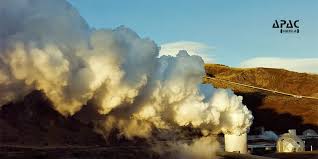
- 18 May 2025
In News:
In a significant advancement for clean energy in Northeast India, Dirang in Arunachal Pradesh has become the site of the region’s first operational geothermal production well. This marks a pivotal step in utilizing Earth’s internal heat for sustainable energy generation in the eastern Himalayas.
Project Details
- Location:Dirang, West Kameng district, Arunachal Pradesh
- Terrain: Eastern Himalayan region
Technology Used
- The project employs a closed-loop binary Organic Rankine Cycle (ORC) system, which captures subsurface geothermal heat for applications such as:
- Electricity generation
- Space heating
- Agricultural processing
- Reservoir Temperature: Approx. 115°C — optimal for direct-use geothermal systems.
- Drilling Approach: Low-impact precision drilling aimed at fault zones between quartzite and schist rock formations.
Institutional Collaboration
- Implementing Agency:Centre for Earth Sciences and Himalayan Studies (CESHS), Itanagar
- Supported by:
- Ministry of Earth Sciences, Government of India
- Government of Arunachal Pradesh
- International partners from Norway, Iceland, and Guwahati research institutes
Significance
- First-of-its-kind in the entire Northeast region
- Potential to make Dirang energy self-reliant through clean geothermal power
- Helps replace diesel and firewood in cold climates, reducing emissions
- Can enhance agricultural productivity and living standards in high-altitude areas
- Strengthens India’s geothermal potential (~10,600 MW), offering reliable base-load renewable energy unlike solar or wind
Stagflation and Banking Sector Risks in the U.S.

- 18 May 2025
In News:
In 2025, economic analysts are raising alarms over growing signs of stagflation in the United States and its potential to trigger a renewed banking crisis similar to the collapse of Silicon Valley Bank (SVB) in 2023.
Unrealized Losses in U.S. Banks
As of early 2025, U.S. banks are grappling with $482.4 billion in unrealized losses from securities investments, according to the Federal Deposit Insurance Corporation (FDIC). This marks a 32.5% rise from the previous quarter. The figure is approaching the $515 billion mark observed during the SVB crisis and could rise to $600–700 billion if interest rates hit 5%.
These losses are primarily linked to long-term securities like government bonds, whose prices have fallen due to rising benchmark 10-year Treasury yields, now exceeding 4.5%.
What is Stagflation?
Stagflation is a rare and difficult economic condition marked by:
- High inflation
- Stagnant or negative economic growth
- High unemployment
It complicates policymaking because:
- Tightening monetary policy (raising interest rates) to control inflation can worsen unemployment and slow growth.
- Loosening policy to boost growth can further fuel inflation.
Causes of Stagflation in 2025:
- Supply Shocks – Rising input costs (e.g., energy or tariffs).
- Tariff Hikes – New U.S. tariffs on imports have raised production costs.
- Policy Missteps – Uncoordinated fiscal and monetary measures.
Impacts on the Financial Sector
- Reduced Bond Values: High interest rates lower the market value of banks’ bond holdings.
- Risk of Bank Runs: Diminished asset values can trigger depositor panic.
- Credit Losses: Particularly in sectors like tech and venture capital where firms have weak earnings and poor debt coverage.
- Liquidity Crisis: A sudden negative news cycle could lead to another SVB-like collapse.
Experts warn that continued high interest rates could deepen banking stress and prolonged stagflation could amplify credit defaults.
Tsarap Chu Conservation Reserve
- 17 May 2025
In News:
Recently, the Himachal Pradesh Government notified the Tsarap Chu Conservation Reserve, making it India’s largest conservation reserve, spanning 1,585 sq km. It is located in the Spiti Valley of Lahaul-Spiti district, a high-altitude, cold desert ecosystem.
Legal Status:
- Declared under Section 36A(1) of the Wildlife (Protection) Act, 1972
- It is Himachal Pradesh’s fifth conservation reserve after Darlaghat, Naina Devi, Potter Hill, and Shilli
Geographical Significance:
- Boundaries:
- North: Union Territory of Ladakh
- East: Kibber Wildlife Sanctuary (up to Malang Nala and LungarLungpa)
- South: KabjimaNala
- West: Chandratal Wildlife Sanctuary
- Encompasses the confluence of Unam River and CharapNala
- Serves as the catchment area of Charap Nallah and a critical wildlife corridor linking Kibber and Chandratal sanctuaries
Ecological Importance:
- Identified as a high-density snow leopard habitat
- Other key species:
- Tibetan wolf, bharal (blue sheep), Himalayan ibex
- Kiang (Tibetan wild ass), Tibetan argali
- Rich in avian biodiversity: Rose Finch, Tibetan Raven, Yellow-billed Chough
Management and Community Involvement:
- To be managed by a Conservation Reserve Management Committee including local Panchayat representatives
- Emphasizes community-based conservation, balancing ecological goals with local livelihoods
- Promotes eco-tourism, wildlife research, and nature-based livelihood opportunities
Dr. Ajay Kumar appointed as UPSC Chairman
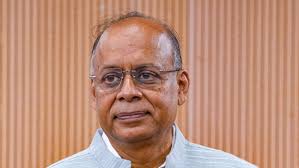
- 17 May 2025
In News:
Dr. Ajay Kumar, former Defence Secretary and a 1985-batch IAS officer of Kerala cadre, took oath as the new Chairman of the Union Public Service Commission (UPSC) on May 2025. The oath was administered by Lt. Gen. Raj Shukla, the senior-most member of the Commission, following the end of Preeti Sudan’s tenure on April 29, 2025.
Profile of Dr. Ajay Kumar:
- Academic Qualifications:
- B.Tech in Electrical Engineering – IIT Kanpur
- M.Sc. in Applied Economics – University of Minnesota, USA
- Ph.D. in Business Administration – Carlson School of Management, USA
- Key Positions Held:
- Managing Director, IT Department, Government of Kerala
- Secretary, Defence Production
- Director General, National Informatics Centre
- Secretary, Ministry of Defence
- E-Governance Contributions:
- Initiated digital platforms like Jeevan Pramaan, MyGov, PRAGATI, and Cloud First Policy
- Introduced biometric attendance systems and digital OPD registrations in AIIMS
He brings over 35 years of administrative experience in both state and central governments and has several publications in reputed journals.
Union Public Service Commission (UPSC) – At a Glance
Constitutional Backing:
- Established under Articles 315–323 of the Constitution
- Originally formed: October 1, 1926
- Became a constitutional body on January 26, 1950
Composition:
- Comprises a Chairman and other members, appointed by the President
- At least half the members must have held government office for 10+ years
- Presently, the Commission has vacancies for 2 members
Tenure:Chairman/Members hold office for 6 years or until 65 years of age, whichever is earlier
Resignation & Removal:
- Can resign by writing to the President
- Can be removed for misbehavior, only after an inquiry by the Supreme Court
Post-Tenure Restrictions:
- Chairman: Not eligible for any further government employment
- Members: Can be appointed as Chairman of UPSC or State PSC, but not to any other office of profit
Functions of UPSC:
- Central recruitment agency for:
- Civil Services Examination (CSE)
- Engineering Services (ESE)
- Combined Medical Services (CMS), and more
- Advises the government on:Recruitment rules, appointments, promotions, and disciplinary matters
Sakurajima Volcano Eruption
- 17 May 2025
In News:
Japan’s Sakurajima volcano, located in Kagoshima Prefecture on the southern island of Kyushu, recently erupted sending a dense ash plume 3,000 metres into the sky. The eruption originated from the Minamidake summit crater and was accompanied by a Level 3 volcanic alert, advising people to stay away from the vicinity.
Key Features of Sakurajima Volcano:
- Type: Stratovolcano (composite volcano)
- Geological Setting: Situated on a convergent plate boundary, formed from subduction-related volcanic activity.
- Structure: Comprises North Peak and South Peak, and lies on the southwestern rim of the Aira Caldera.
- Historical Significance: Was an island until the 1914 eruption, which connected it to the ?sumi Peninsula.
- Frequent Activity: One of Japan's most active volcanoes, experiencing daily minor eruptions and emitting continuous volcanic smoke.
Volcanic Characteristics:
- Lava Type:Andesitic – high in gas content and viscosity, leading to explosive eruptions.
- Hazards: Produces ash fall, pyroclastic flows, volcanic bombs, and toxic gases.
- Proximity to Populated Areas: Only 4 km from Kagoshima City, making it a high-risk volcano with strict monitoring by the Japan Meteorological Agency (JMA).
Impact and Preparedness:
- No injuries or major damages have been reported as of now.
- Ash fall warnings were issued for Kagoshima, Kumamoto, and Miyazaki prefectures.
- The eruption highlights Japan’s robust disaster preparedness and early warning systems, essential due to the country's location on the Pacific Ring of Fire.
Operation Keller
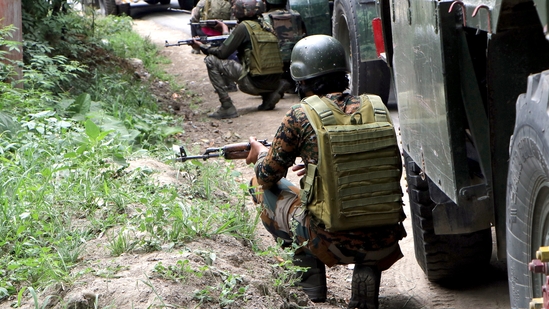
- 16 May 2025
In News:
On 13 May 2025, the Indian Army, in coordination with the J&K Police and CRPF, launched Operation Keller, a targeted counter-terrorism operation in the Keller forests of Shopian district, Jammu & Kashmir. The operation led to the elimination of three terrorists, including Shahid Kuttay, the chief of The Resistance Front (TRF) and the alleged mastermind behind the Pahalgam terror attack.
Key Objectives:
- Neutralise terrorists affiliated with The Resistance Front (TRF), a proxy of Lashkar-e-Taiba (LeT).
- Specifically eliminate Shahid Kuttay, involved in the April 2025 Pahalgam attack that killed 26 civilians.
- Secure volatile forested zones in South Kashmir to prevent future infiltrations and retaliatory threats.
Details of the Operation:
- Launch Date: 13 May 2025
- Location:Shoekal Keller forest area, Shopian district, J&K
- Conducted By: Indian Army (Rashtriya Rifles), J&K Police, CRPF
- Method: Intelligence-based search and destroy mission
- Outcome: Elimination of three hardcore terrorists after a fierce gunfight; operation ongoing.
Pahalgam Terror Attack Link:
- Posters announcing ?20 lakh bounty per terrorist involved in the Pahalgam killings were circulated in Pulwama.
- J&K Police released sketches identifying the three LeT-linked terrorists responsible.
- Operation Keller targeted the network allegedly behind this attack.
About Shopian District:
- Location: Southern Kashmir Valley; bordered by Pulwama, Anantnag, Kulgam, and PirPanjal mountains.
- Elevation: ~2,146 metres; experiences harsh winters (up to −7°C).
- Economy: Agriculture-based, especially apple orchards.
- History:
- Upgraded to district status in 2007 (earlier part of Pulwama).
- Lies along the historic Mughal Road connecting Lahore and Srinagar.
- Name Origin: Possibly from “Shah-payan” (royal stay) or “Shin-van” (snow forest).
Extended Fund Facility (EFF)
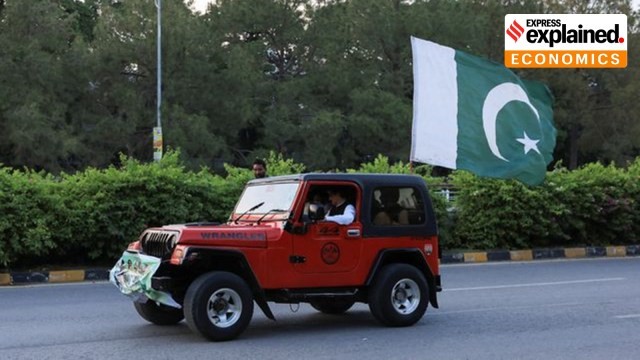
- 16 May 2025
In News:
Recently, the IMF Executive Board approved a $1 billion disbursement to Pakistan under the Extended Fund Facility (EFF). This brings total disbursements under the current EFF arrangement to $2.1 billion out of a total planned support of $7 billion.
What is the Extended Fund Facility (EFF)?
- Governed by: International Monetary Fund (IMF), part of the Bretton Woods Institutions.
- Purpose: To support countries facing medium-term balance of payments problems caused by structural economic weaknesses.
- Nature of Support:Loan (not a grant or aid), with extended repayment periods.
- Tenure: Typically spans over three or more years, with phased disbursements.
- Objective: Enables countries to implement structural reforms such as:
- Broadening the tax base
- Strengthening financial institutions
- Reducing fiscal deficits
- Managing inflation
Eligibility for EFF:
To qualify, countries must:
- Exhibit persistent balance of payments stress
- Have deep-rooted economic weaknesses (e.g., poor governance, low investment, weak tax systems)
- Show a willingness to undertake IMF-monitored reforms
Pakistan’s Economic Situation:
- Stagnant GDP: Estimated at $338 billion in 2023, lower than in 2017.
- High Inflation: Averaging over 20% between 2020–2024.
- Frequent Borrowing: Pakistan has received 28 IMF loans in 35 years, and also borrows from:
- China
- UAE and Saudi Arabia
- ADB, IDB, Paris Club, Nordic Development Fund
Key Challenges:
- Economic mismanagement
- Low savings and investment
- Infrastructure gaps
- Low female workforce participation
- High population growth
Why Did IMF Approve the 2025 Tranche?
The IMF approved the tranche based on positive macroeconomic developments:
- Reduced inflation: Down to 0.3% in April 2025
- Improved forex reserves
- Fiscal reforms: Implementation of the FY2025 budget and Agricultural Income Tax
- Credible reform measures: IMF noted Pakistan’s “significant progress” in restoring economic stability.
Golden Dragon 2025
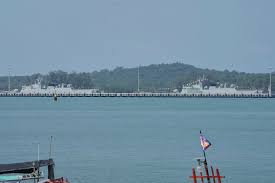
- 16 May 2025
In News:
In May 2025, Cambodia and China launched their largest-ever edition of the annual Golden Dragon military exercise, featuring coordinated land, sea, and air operations. This drill underscores deepening military and strategic cooperation between the two countries amidst shifting geopolitical alignments in Southeast Asia.
About Golden Dragon Exercise:
- Inception: Initiated in 2016, Golden Dragon is a bilateral military exercise between China and Cambodia.
- Objective: Strengthens defence ties, capacity building, and joint operational readiness.
- 2025 Theme: Focuses on joint counter-terrorism operations and humanitarian relief efforts, projecting it as a peace-oriented and technologically advanced drill.
Key Highlights
- Venue: Conducted at Ream Naval Base, located on Cambodia’s southern coast near Sihanoukville.
- Military Domains: Involves exercises across land, sea, and air.
- Technological Showcase:
- Reconnaissance and attack drones
- Surgical robots
- Robot dogs
- These technologies highlight an evolution toward AI-driven and robotic warfare capabilities.
Strategic and Geopolitical Significance:
- Ream Naval Base Expansion:
- China has funded upgrades to this naval base, raising concerns about possible dual-use military capabilities and Beijing's expanding naval footprint in the Gulf of Thailand.
- Cambodia denies hosting any exclusive foreign military presence but allows docking of ships from friendly nations, including recent arrivals from Japan, Vietnam, and China.
- China-Cambodia Relations:
- Cambodia is considered China’s closest ally in Southeast Asia.
- China is a major economic and military benefactor, with growing influence in Cambodian infrastructure and defence.
- Counterbalance to U.S. Influence:
- The drill coincides with the U.S.-led Balikatan exercise, which includes forces from the U.S., Philippines, Australia, and Japan.
- Reflects the strategic competition between China and the U.S. in the Indo-Pacific region.
- “String of Pearls” Strategy:
- China’s involvement in ports like Ream (Cambodia), Hambantota (Sri Lanka), and Gwadar (Pakistan) reflects its strategy to establish logistical and strategic outposts across the Indian Ocean Region (IOR).
Desalination Technology
- 16 May 2025
The Defence Research & Development Organisation (DRDO), under the Aatmanirbhar Bharat initiative, has successfully developed a high-pressure, nanoporous, multilayered polymeric membrane for seawater desalination.
Developing Agency:
- The technology was developed by the Defence Materials Stores Research & Development Establishment (DMSRDE), Kanpur, a DRDO laboratory.
- It addresses the Indian Coast Guard's (ICG) operational needs aboard Offshore Patrol Vessels (OPVs), especially to counter instability caused by chloride ions in saline water.
Salient Features of the Technology:
- Indigenous development completed in a record time of 8 months.
- Successfully tested in existing desalination plants aboard ICG vessels.
- Undergoing 500-hour operational testing before final clearance by ICG.
- Can be adapted for use in coastal areas for civilian desalination purposes as well.
Strategic Significance:
- Enhances onboard freshwater self-reliance for maritime security forces.
- Reduces dependency on imported technologies.
- Contributes to India’s self-reliance in critical defence and water technologies.
Desalination Technology: Key Concepts
What is Desalination?
Desalination is the process of removing dissolved salts and minerals from seawater or brackish water to produce potable or industrial-grade water.
Main Technologies Used:
- Reverse Osmosis (RO):
- Pressure-driven membrane filtration.
- Uses semi-permeable membranes to separate salts from water.
- Thermal Desalination:Involves evaporation followed by condensation to obtain fresh water.
Working of RO Desalination:
- In osmosis, water naturally moves from low solute to high solute concentration across a membrane.
- In reverse osmosis, external pressure is applied to force water from high solute (saline) to low solute (freshwater) side.
- RO membranes allow only water molecules to pass, filtering out salts and impurities.
- Seawater with ~35,000 ppm Total Dissolved Solids (TDS) is reduced to 200–500 ppm, making it drinkable.
JenuKuruba Tribe
- 15 May 2025
In News:
In a significant move, families from the JenuKuruba tribe have begun returning to their ancestral lands located within Nagarhole National Park. This reoccupation marks an important step in their decades-long struggle to reclaim traditional forest habitats.
Who are the JenuKurubas?
The JenuKuruba are an indigenous tribal community classified as a Particularly Vulnerable Tribal Group (PVTG) in India. They are primarily concentrated in the Kodagu and Mysuru districts of Karnataka.
- Etymology:The term "JenuKuruba" derives from Kannada—“jenu” means honey, reflecting their age-old practice of honey collection. Traditionally, they depend on forest produce, minor agriculture, and gathering activities for their livelihood.
- Alternate Names:They are also known as Then Kurumba or KattuNaikar in various local contexts.
Settlement and Lifestyle
- Habitat:The community resides in compact settlements known as “Hadi.”
- Living Style:They follow a semi-nomadic lifestyle, shaped by their deep relationship with forest ecosystems rather than external authorities like the state, police, or religious institutions.
Community Structure
- Governance:
The JenuKurubas follow a traditional leadership hierarchy that includes:- Yajamana (Headman) – responsible for social matters
- Gudda (Ritual Head) – oversees religious ceremonies
While the Gudda handles spiritual issues, all other community functions are managed locally under the guidance of the Yajamana.
Belief System and Culture
- Spiritual Beliefs:Their religion is rooted in the worship of supernatural spirits and deities unique to their tradition. These spiritual entities have distinct identities and are central to their worldview.
- Cultural Expressions:Music, dance, and oral storytelling are vital cultural practices. Their traditional songs and dances revolve around themes of agriculture, marriage, mythology, and faith.
Significance of the return to Nagarhole
The recent return of JenuKuruba families to Nagarhole represents not just a physical homecoming, but a cultural revival. For the tribe, the forest is not just a resource—it is sacred ground tied to their identity, heritage, and spiritual life.
Their reoccupation reopens long-standing debates about conservation, indigenous rights, and forest governance in India.
NiveshakShivir
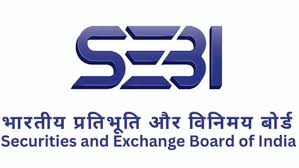
- 13 May 2025
In News:
In May 2025, the Investor Education and Protection Fund Authority (IEPFA), under the Ministry of Corporate Affairs, in collaboration with the Securities and Exchange Board of India (SEBI), convened a strategic preparatory meeting at SEBI’s Mumbai office to launch the “NiveshakShivir” initiative. This nationwide investor outreach program aims to facilitate the reclamation of unclaimed dividends and shares by investors across India.
Key Features of “NiveshakShivir”
- Investor Helpdesks: Physical helpdesks will be set up to enable investors to interact directly with company representatives and Registrars and Transfer Agents (RTAs) for end-to-end assistance in recovering unclaimed assets.
- Digital Search Facility: IEPFA provides an online portal (https://iepfa.gov.in/login) where shareholders can check if their shares have been transferred to the IEPF and file claims using Form IEPF-5.
- Streamlined Process: Clear guidance is provided for shareholders holding shares in dematerialized or physical form to verify and reclaim their unclaimed dividends and shares efficiently.
- Coverage: The initiative is set to launch first in Mumbai and Ahmedabad, with plans to expand to other cities with high volumes of unclaimed investor assets.
Actions for Shareholders
- Demat Shareholders: Are encouraged to directly contact respective companies for clarification regarding shares liable for transfer to IEPFA.
- Physical Shareholders: Should verify share status on the IEPFA website and claim refunds if shares have been transferred.
- The initiative reduces dependence on intermediaries and improves transparency and efficiency in the recovery process.
About the Investor Education and Protection Fund Authority (IEPFA)
- Legal Basis: Established under Section 125 of the Companies Act, 2013.
- Function: Operates under the Ministry of Corporate Affairs to protect investor interests, promote financial literacy, and manage the corpus of unclaimed dividends, matured deposits, and shares transferred by companies.
- Objective: To foster a transparent, investor-friendly financial ecosystem through outreach and education programs like “NiveshakShivir.”
India and Chile Sign Terms of Reference for CEPA Negotiations
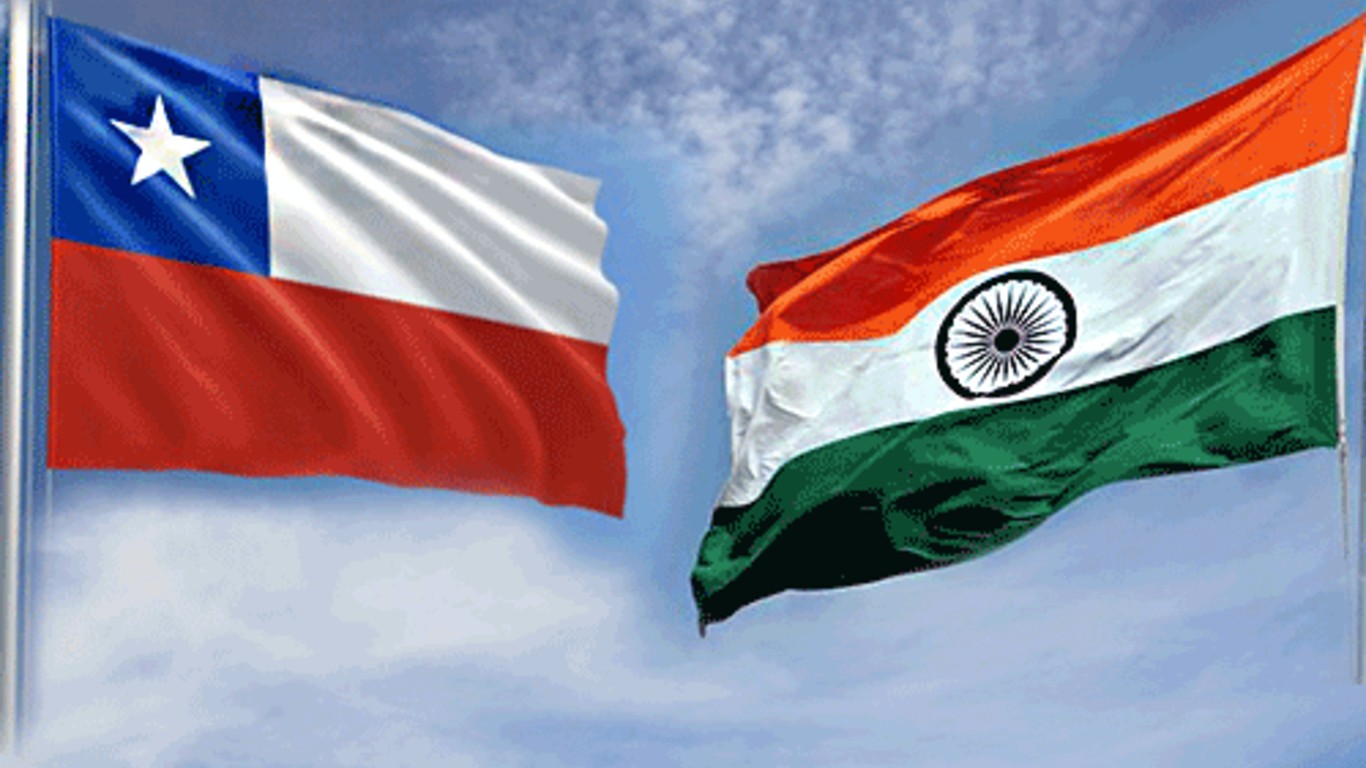
- 13 May 2025
In News:
Recently, India and Chile signed the Terms of Reference (ToR) to initiate negotiations for a Comprehensive Economic Partnership Agreement (CEPA), marking a significant step toward deepening bilateral economic ties.
Background and Significance
- The CEPA aims to expand and build upon the existing Preferential Trade Agreement (PTA) between the two countries by covering a broader range of sectors including digital services, investment promotion, MSMEs, and critical minerals.
- India and Chile share warm, strategic bilateral relations strengthened over years through high-level exchanges. The economic partnership began with a Framework Agreement in 2005, followed by a PTA in 2006, an expanded PTA effective from 2017, and further discussions towards CEPA since 2019.
- A Joint Study Group report finalized in April 2024 laid the foundation for advancing to a CEPA to unlock the full trade and investment potential between the two nations.
- The recent State visit of Chile’s President Gabriel Boric Font to India in April 2025 reaffirmed both countries’ commitment to enhancing trade frameworks and fostering a balanced, ambitious, and mutually beneficial economic agreement.
About Chile: Geopolitical and Economic Profile
- Chile is a long, narrow South American country bordered by Peru and Bolivia to the north, Argentina to the east, and the Pacific Ocean to the west.
- It shares the longest border in South America with Argentina, which is also the third-longest international border worldwide.
- Key geographical features include the Andes Mountains (the world’s longest continental mountain range), the Atacama Desert (driest non-polar desert globally), the Loa River (Chile’s longest river, approx. 440 km), and Ojos del Salado volcano (world’s highest active volcano at 6,880 meters).
- Situated on the Pacific Ring of Fire, Chile is prone to frequent earthquakes and tsunamis.
- Chile is the world’s largest producer of copper and a significant member of the “Lithium Triangle” (alongside Argentina and Bolivia), holding over 75% of global lithium reserves found in salt flats.
- Other important resources include molybdenum, iron ore, timber, hydropower, and precious metals.
Importance for India
- The CEPA negotiations with Chile are expected to enhance trade and investment flows, promote MSMEs, and strengthen cooperation in critical sectors such as minerals and digital services.
- This move aligns with India’s broader strategy to diversify economic partnerships globally and deepen ties with Latin American countries.
- Enhanced economic integration with Chile will boost employment, trade balance, and strategic cooperation between the two nations.
Arnala
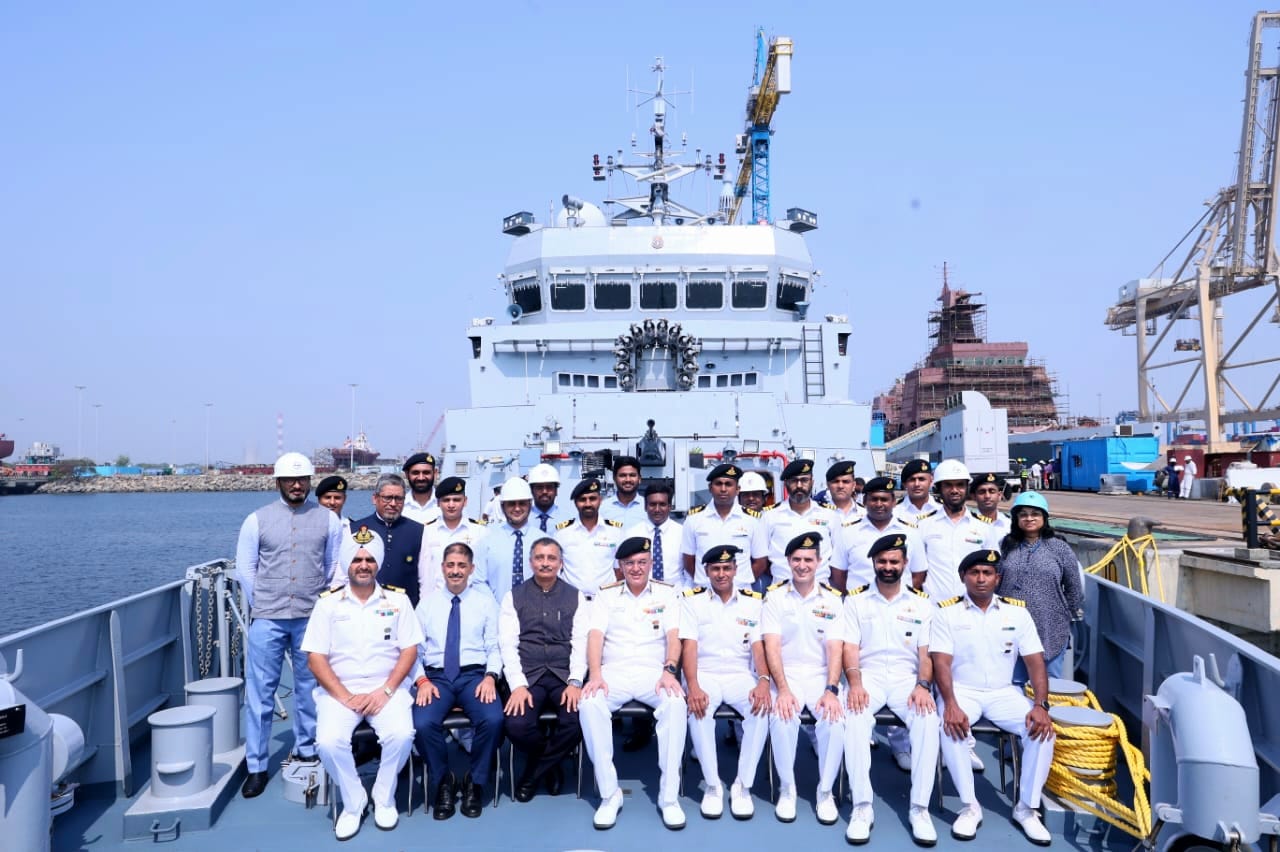
- 13 May 2025
In News:
Recently, the Indian Navy received Arnala, the first of eight indigenously designed and built Anti-Submarine Warfare Shallow Water Crafts (ASW SWCs). The vessel was constructed by Garden Reach Shipbuilders and Engineers (GRSE), Kolkata, in partnership with M/s L&T Shipyard, Kattupalli, under a Public-Private Partnership (PPP), exemplifying the growing collaboration in India’s defence manufacturing sector.
Key Features and Significance
- Arnala is named after the historic Arnala Fort located off Vasai, Maharashtra, symbolizing India’s rich maritime heritage.
- The ship measures 77 metres in length and is the largest Indian Naval warship powered by a Diesel Engine-Waterjet propulsion system.
- Designed and built according to the Indian Register of Shipping (IRS) classification rules, the vessel adheres to domestic naval architecture standards.
- Over 80% of the ship’s components are sourced indigenously, marking a significant stride toward the Government’s vision of ‘Aatmanirbhar Bharat’ in defence production.
Operational Roles
The Arnala class ASW SWCs are specialized for:
- Underwater surveillance in coastal and littoral zones
- Conducting search and rescue (SAR) operations
- Engaging in Low Intensity Maritime Operations (LIMO)
- Performing coastal Anti-Submarine Warfare (ASW) missions
- Advanced mine-laying activities
The induction of these vessels enhances India’s capabilities in shallow water ASW, critical for safeguarding maritime security in near-shore environments and ensuring dominance in the strategically vital littoral areas.
Strategic Importance
The delivery of Arnala signifies a major milestone in the Indian Navy’s ongoing efforts to promote indigenous shipbuilding and strengthen domestic defence manufacturing. It highlights successful public-private collaboration in advanced warship construction and contributes directly to India’s broader strategic goal of self-reliance in defence technology.
20th Session of the United Nations Forum on Forests (UNFF20)
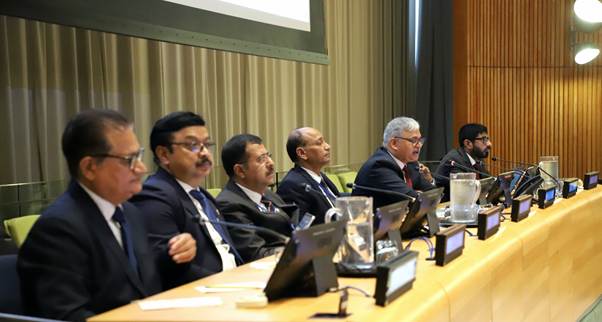
- 13 May 2025
In News:
India actively participated in the 20th session of the United Nations Forum on Forests (UNFF20) held from May 5 to 9, 2025, at the United Nations Headquarters, New York. UNFF, established in 2000 by the UN Economic and Social Council (ECOSOC), is the sole intergovernmental platform dedicated to global forest policy dialogue and coordination, aiming to promote sustainable forest management (SFM) and strengthen political commitment worldwide.
Key Objectives and Functions of UNFF
- Promotes conservation, management, and sustainable development of all forest types.
- Supports the implementation of Agenda 21, Rio Forest Principles, and the UN Strategic Plan for Forests 2017–2030.
- Oversees six voluntary Global Forest Goals (GFGs) and 26 targets, including reversing deforestation and enhancing forest governance.
- Facilitates cooperation through technical exchanges, policy development, financing mechanisms like the Global Forest Financing Facilitation Network, and advocacy linking forests with climate, biodiversity, and sustainable development.
India’s Highlights at UNFF20
India reaffirmed its commitment to the Voluntary National Contributions (VNCs) under the UN Strategic Plan for Forests 2017–2030, reporting progress in increasing its forest and tree cover, which now constitutes 25.17% of the country’s geographical area, as per the latest India State of Forest Report. Major achievements include:
- Restoration efforts under the Aravalli Green Wall project.
- A 7.86% increase in mangrove cover over the past decade.
- Afforestation of over 1.55 lakh hectares through the Green India Mission.
- Plantation of 1.4 billion seedlings under the “Ek Ped MaaKe Naam” (Plant4Mother) campaign.
Global Contributions and Initiatives
India extended an invitation to all UN member states to join the International Big Cat Alliance (IBCA)—a global platform launched by India to conserve seven big cat species through collaborative research, knowledge exchange, and capacity-building.
India also emphasized the importance of incorporating the outcomes of the Country-Led Initiative (CLI) on forest fire management and forest certification—hosted by India in Dehradun in October 2023—into formal global mechanisms. It acknowledged contributions from other countries such as the Republic of Congo, Democratic People’s Republic of Korea, and Austria in this initiative.
Policy and Technical Engagements
India hosted a side event titled “Restoring Degraded Forest Landscapes: India’s Approach to Sustainable Forest Management and Climate Resilience”, showcasing integrated forest restoration strategies combining policy innovation, resource convergence, community participation, and technology.
In a high-level panel on “Valuing Forest Ecosystems in National Policy and Strategy,” India shared pilot study findings from Uttarakhand, Rajasthan, and tiger reserves that quantified ecosystem services like carbon sequestration, water provisioning, and biodiversity conservation. India stressed the need to incorporate ecosystem valuation into national planning to enhance forest governance and ecological sustainability.
Significance of UNFF20
The session focused on advancing three Global Forest Goals:
- Reversing forest cover loss.
- Increasing protected and sustainably managed forests.
- Promoting forest governance and legal frameworks.
UNFF20 aimed to strengthen global dialogue following the 2024 midterm review of the international arrangement on forests and set the agenda for future policy deliberations in 2026. It underscored the critical role forests play in climate resilience, biodiversity, livelihoods, and sustainable development.
Thalassemia Burden in West Bengal higher than National Average

- 12 May 2025
In News:
On World Thalassemia Day, health experts in West Bengal highlighted the state’s significantly higher prevalence of Thalassemia carriers, ranging from 6% to 10%, compared to the national average of 3% to 4% (2011 Census). The elevated rate is mainly attributed to low awareness, intra-community marriages, and inadequate genetic screening.
What is Thalassemia?
- Definition: Thalassemia is a hereditary blood disorder marked by the body’s inability to produce adequate or normal haemoglobin, impairing oxygen transport in the blood.
- Genetic Cause:It arises from mutations or deletions in genes responsible for haemoglobin chains (alpha or beta globin), inherited from both parents.
- Types:
- Alpha Thalassemia: Involves up to four gene deletions; severity varies with number of deletions; common in Southeast Asian, Middle Eastern, and African populations.
- Beta Thalassemia: Caused by mutations in the beta-globin gene; prevalent in Mediterranean, South Asian, and Chinese communities. Includes:
- Thalassemia Minor: Carrier state with mild or no symptoms.
- Thalassemia Major (Cooley’s Anaemia): Severe form requiring lifelong blood transfusions.
- Symptoms:Fatigue, weakness, jaundice, facial deformities, stunted growth, enlarged spleen and liver, and breathlessness.
Thalassemia in India and West Bengal
- India sees about 10,000 to 15,000 babies born annually with Thalassemia Major (National Health Mission, 2016).
- Certain communities like Bengalis, Sindhis, Punjabis, and Gujaratis have higher carrier frequencies.
- West Bengal reports over 18,000 transfusion-dependent Thalassemia patients with a patient positivity rate of 2.5%.
Challenges in West Bengal
- Low Awareness: Many remain uninformed about genetic transmission and implications.
- Intra-community Marriages: Increase risk of two carriers marrying, leading to affected children.
- Insufficient Screening: Inadequate prenatal and adolescent screening limits early detection and prevention.
- No Legal Framework: India lacks laws to prevent marriages between carriers; awareness is the key preventive strategy.
Government Efforts and Recommendations
- West Bengal has established 36 Thalassemia Control Units (TCUs) across districts focusing on screening pregnant women (especially in the first trimester) and adolescents to reduce future disease incidence.
- Experts emphasize early parental screening, informed counseling, and timely medical care.
- Supportive care includes regular blood transfusions, iron chelation therapy, vaccinations, nutritional balance (low iron diet), infection prevention, and mental health counseling.
23rd South Asia Press Freedom Report (2024–25)
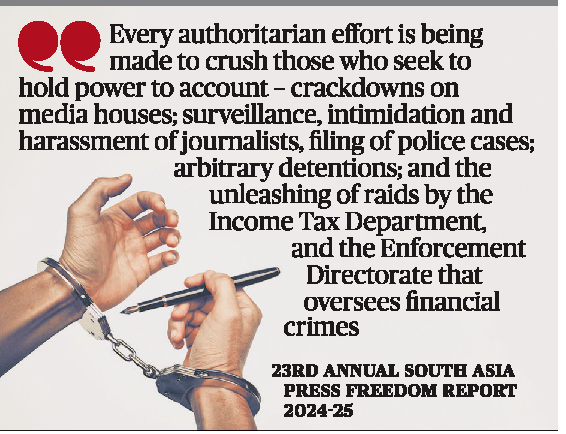
- 12 May 2025
In News:
The 23rd Annual South Asia Press Freedom Report 2024–25, titled “Frontline Democracy: Media and Political Churn”, flags a concerning decline in media freedom across South Asia, including India. Published by the Asia Press Freedom group, the report assesses press conditions in eight countries: India, Pakistan, Afghanistan, Sri Lanka, Bangladesh, Nepal, Bhutan, and the Maldives.
Key Findings
- Over 250 violations of media rights recorded.
- 69 journalists were jailed or detained; 20 killed in the line of duty.
- India ranked 151st globally in press freedom; Bhutan dropped to 152nd—its lowest ever.
- Pakistan witnessed its most violent year for journalists in two decades, with eight killed.
India-Specific Observations
Legal and Institutional Suppression
- Increasing use of stringent laws like UAPA, PMLA, defamation, and sedition against journalists.
- Media organizations critical of the government have faced IT raids, ED investigations, and denial of government advertising.
- These actions have led to widespread self-censorship and a chilling effect on critical reporting.
Disinformation and Political Interference
- Political IT Cells play a key role in spreading fake news and hate speech, deepening the trust deficit in mainstream media.
- The Global Risks Report 2024 identifies “manipulated information” as the world’s most serious short-term threat.
Digital & Economic Challenges
- AI-generated content undermines journalistic credibility and originality.
- Media workforce faces challenges from:
- Declining advertisement revenue
- Contractualisation under new labour codes
- Mergers and corporate restructuring
- Precarity of gig and freelance journalists
Gender Inequality
- Poor representation of women in newsroom leadership roles.
- Pervasive gender-based harassment remains unaddressed.
Impacts of Eroding Media Freedom
- Democratic Deficit: Weakens the role of the press as the fourth pillar of democracy.
- Public Mistrust: Rising perception of media bias and loss of credibility.
- Reduced Information Access: Laws like the DPDP Act 2023 and changes to RTI provisions hinder public transparency.
Balochistan
- 12 May 2025
In News:
On May 9, 2025, Mir Yar Baloch announced the unilateral declaration of independence for Balochistan from Pakistan. In a public appeal, he urged India to formally recognize Balochistan as a sovereign state and open an embassy in New Delhi. He also called upon the United Nations to deploy peacekeeping forces and demanded the withdrawal of the Pakistani military from the region.
Geographical Profile
- Location: Balochistan lies in the southwestern part of Pakistan and is the country’s largest province by area, comprising nearly 44% of its total territory.
- Area: Approximately 347,190 square kilometers
- Capital: Quetta, situated near the Afghanistan border
- Borders:
- East: Sindh and Punjab provinces
- West: Iran
- Northwest: Afghanistan (across the Durand Line)
- South: Arabian Sea, with a coastline of around 770 km
Topography and Climate
- Characterized by rugged, mountainous terrain (notably the Sulaiman and Makran ranges)
- Arid and semi-arid climate zones, including desert and dry steppe regions
- Low population density, yet abundant in untapped mineral wealth
Demographics and Ethnicity
- Major Ethnic Group: The Baloch, who trace their ancestry to Iranian origins
- Other Communities: Pashtuns in the northern areas, and the Brahui ethnic group
- Languages Spoken: Balochi, Pashto, Brahui, and Urdu
- Religion: Predominantly followers of Sunni Islam
Strategic and Geopolitical Significance
Natural Resource Wealth
- Balochistan is rich in natural gas, coal, copper, and gold.
- The RekoDiq mining site is among the world’s largest undeveloped gold and copper reserves.
- The province contributes about 40% of Pakistan’s natural gas production, yet remains economically underdeveloped and politically marginalized.
China-Pakistan Economic Corridor (CPEC)
- Gwadar Port, located in southern Balochistan, is a critical node in China’s Belt and Road Initiative (BRI).
- It provides China with direct maritime access to the Arabian Sea and strategic connectivity to West Asia, bypassing the Strait of Malacca.
India’s Strategic Perspective
- India has consistently highlighted human rights violations in Balochistan at international forums.
- The region’s geostrategic position intersects with India’s Indo-Pacific vision, and is relevant in India’s efforts to counter China’s growing footprint through CPEC.
Insurgency and Security Dynamics
- Balochistan has long witnessed separatist movements led by Baloch nationalist groups seeking either enhanced autonomy or full independence from Pakistan.
- These groups frequently target Pakistani military convoys, CPEC infrastructure projects, and Chinese nationals working in the region, signaling strong opposition to external control and resource exploitation.
New Framework for Regulation Formulation and Public Consultation
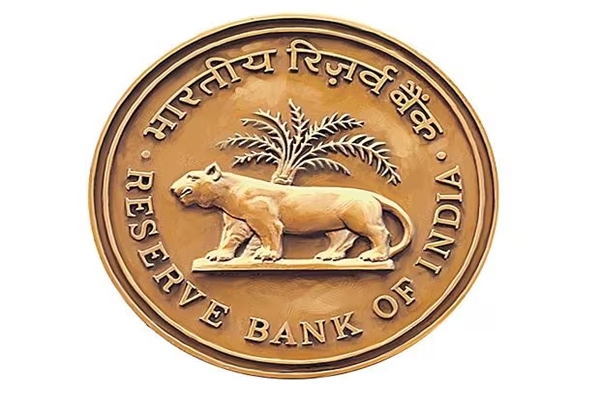
- 10 May 2025
In News:
The Reserve Bank of India (RBI) has introduced a structured framework designed to standardize the creation and revision of its regulatory policies. This initiative aims to enhance transparency, consistency, and public engagement throughout the regulatory process.
Key Aspects of the Framework
- Unified Application:The framework covers all forms of RBI regulations, including directions, guidelines, notifications, policies, and standards.
- Mandatory Public Consultation:Draft regulations are required to be published on the RBI’s official website along with a detailed Statement of Particulars. These drafts will remain open for public comments for a minimum period of 21 days, allowing stakeholders to provide their inputs.
- Impact Evaluation:Each draft must clearly outline its objectives, conduct an impact assessment, and reference relevant international best practices and global standards to ensure comprehensive evaluation.
- Response to Feedback:After considering public comments, the RBI will release a summary addressing the feedback alongside the final version of the regulations.
- Regular Review:Existing regulations will undergo periodic reassessment based on supervisory insights, alignment with global developments, and their continued applicability in a dynamic environment.
Significance of the Framework
- Enhances Transparency and Inclusiveness:By inviting public participation, the framework ensures a more open and accountable regulatory process.
- Encourages Evidence-Based Policy:The incorporation of impact analysis and stakeholder feedback supports more informed and effective policymaking.
- Aligns with Global Standards:The framework positions India’s regulatory governance in harmony with international best practices.
- Boosts Regulatory Efficiency:Continuous review and rationalization help in eliminating redundant regulations and improving overall governance.
International Maritime Defence Exhibition (IMDEX) Asia 2025
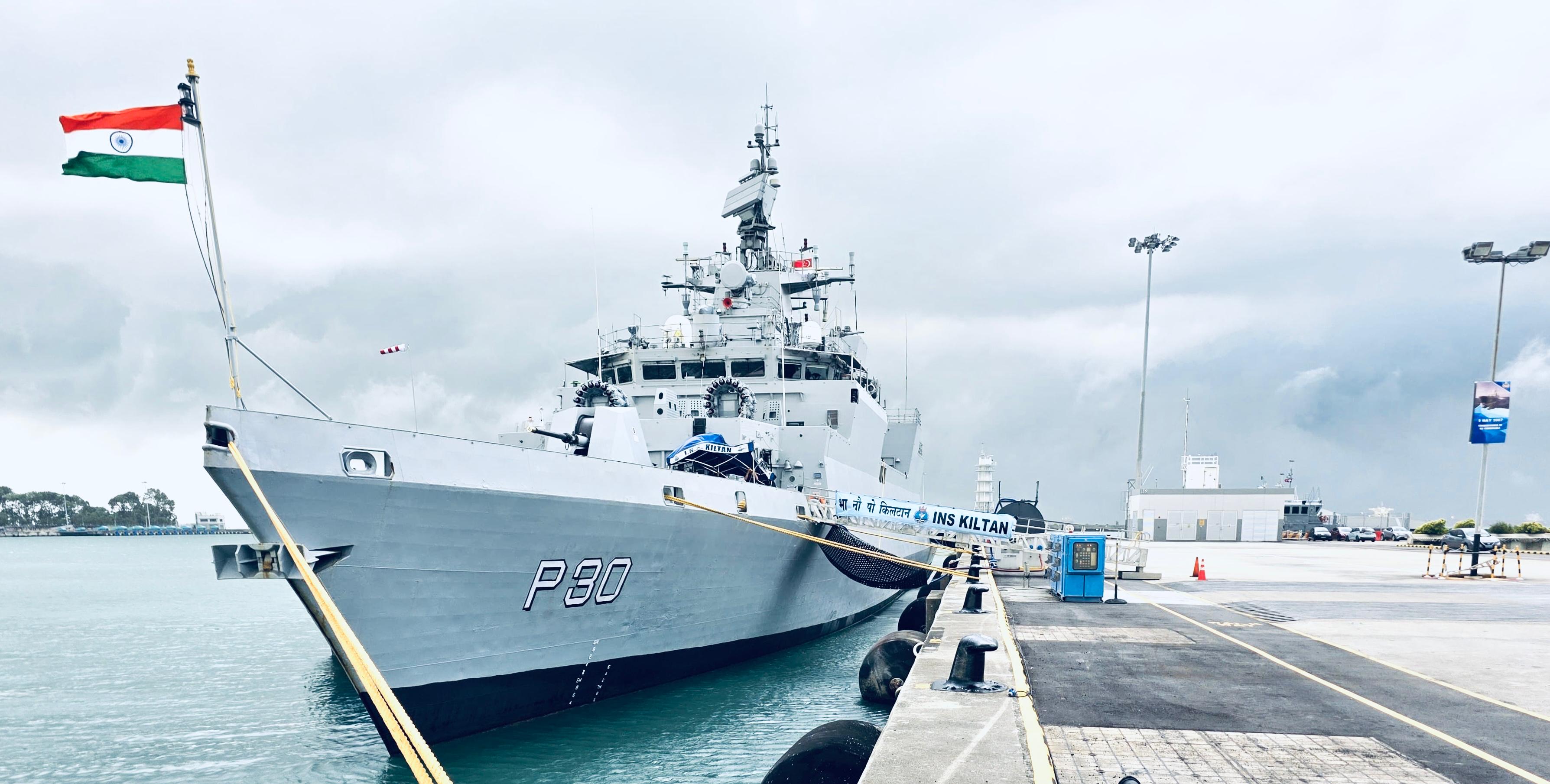
- 10 May 2025
In News:
The International Maritime Defence Exhibition (IMDEX) Asia is a leading biennial maritime and defence event in the Asia-Pacific region, held since 1997 in Singapore at the Changi Exhibition Centre. It serves as a key global platform for navies, coast guards, and maritime defence industries to showcase advanced naval platforms, cutting-edge technologies, and engage in strategic dialogue.
Indian Navy’s Participation
- In May 2025, the Indian Naval Ship INS Kiltan arrived in Singapore to participate in IMDEX Asia 2025.
- This deployment forms part of the Indian Navy’s operational commitments and highlights the strong maritime partnership between India and Singapore.
- During the exhibition, the Indian Navy crew engaged in multiple bilateral and multilateral activities, including professional exchanges with the Republic of Singapore Navy (RSN) and other participating navies.
- Activities included guided tours for schoolchildren, cross-deck visits with other navies, and curated visits for defence industry representatives to promote awareness of maritime security and India’s naval heritage.
Key Features of IMDEX Asia
- Platform for Defence Collaboration: IMDEX Asia facilitates showcasing of naval systems and debut of advanced maritime technologies.
- Strategic Dialogue: The event hosts high-level policy discussions and strategic dialogues on maritime security.
- International Maritime Security Conference (IMSC):
- Established in 2009, IMSC is a crucial component of IMDEX.
- Jointly organised by the Republic of Singapore Navy and the S. Rajaratnam School of International Studies (RSIS).
- It convenes navy chiefs, coast guard leaders, policymakers, and strategic analysts.
- The conference aims to enhance mutual maritime security, improve maritime domain awareness, and foster cooperative responses to challenges in the global maritime commons.
Significance
- The Indian Navy’s participation in IMDEX Asia underlines its commitment to regional maritime security and stability.
- It also reinforces the longstanding friendly ties between India and Singapore and highlights the importance of naval interoperability and defence cooperation in the Indo-Pacific region.
Persian Gulf vs Arabian Gulf
- 10 May 2025
In News:
The United States, under then-President Donald Trump, proposed a shift in terminology by referring to the Persian Gulf as the “Arabian Gulf” during a state visit to Saudi Arabia, aligning with the preferences of some Arab Gulf countries.
Historical and Geopolitical Background
- The name “Persian Gulf” has been historically documented since the 16th century, appearing in treaties, maps, and international references.
- Arab countries such as Saudi Arabia, UAE, and Bahrain use the term “Arabian Gulf” in national documents and cartography.
- The proposal by Trump faced criticism from Iran, which regards the renaming as a politically motivated act aimed at undermining its historical and cultural identity.
Iran’s Response
- Iran’s leadership, including Foreign Minister Abbas Araghchi, has condemned any attempt to alter the name, calling it a hostile and invalid act with no legal or geographical legitimacy.
- In 2012, Iran had threatened to sue Google for omitting the name "Persian Gulf" from its maps.
International Standards
- The International Hydrographic Organisation (IHO), responsible for standardizing maritime names, continues to officially recognise the name “Persian Gulf.”
- While countries can adopt different terms domestically, they cannot enforce global changes unilaterally.
Geographical Features of the Persian Gulf
- Type: Marginal sea of the Indian Ocean, located in Western Asia.
- Size: ~251,000 km²
- Depth: Average ~50 m; Maximum ~90 m
- Coastline: ~5,117 km; Iran has the longest stretch (~1,536 km)
- Borders:
- North: Iran
- Southwest: Saudi Arabia, UAE, Qatar
- Northwest: Iraq, Kuwait, Bahrain
- Islands:
- Qeshm Island (Iran): Largest in the Gulf (~1,491 km²)
- Bahrain: Sovereign island nation with over 50 islands and a key US naval base
Strategic and Economic Significance
- The Strait of Hormuz, linking the Persian Gulf to the Arabian Sea, is a critical chokepoint for global energy, with ~30% of global oil exports passing through.
- The region is a theatre of military presence, with navies of the US, Iran, and Gulf countries asserting control and influence.
- Strategic islands like Qeshm and Bahrain hold economic and military importance.
Operation Sindoor
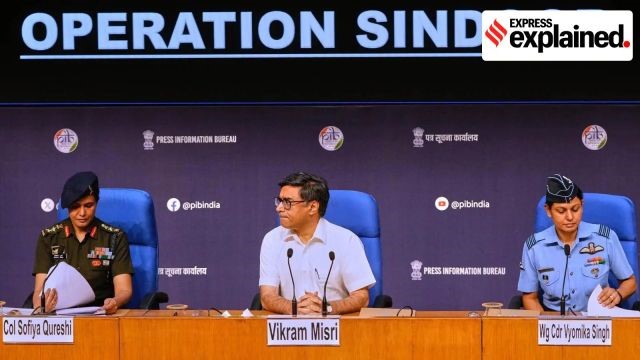
- 10 May 2025
In News:
On May 7, 2025, the Indian Armed Forces launched Operation Sindoor, a coordinated precision strike on terrorist camps located in Pakistan and Pakistan-occupied Kashmir (PoK). The operation was a response to the killing of civilians in Pahalgam by Pakistan-backed terrorists.
Key Facts:
- 21 terror camps across 9 locations were targeted.
- Advanced niche-technology weapons were employed to ensure minimal collateral damage.
- The operation highlights India's evolving capability in long-range, precision-guided weaponry.
Major Precision-Guided Weapons in India’s Arsenal
1. HAMMER (Highly Agile and Manoeuvrable Munition Extended Range)
- Origin: France (by Safran)
- Platform: Integrated with Rafale fighter jets
- Range: Up to 70 km
- Features:
- All-weather precision
- Autonomous guidance
- Jamming-resistant
- Operable at low altitude over rough terrains
- Role in Operation: Likely used for air-to-ground strikes on tactical targets.
2. SCALP (Storm Shadow in UK)
- Type: Air-launched stealth cruise missile
- Origin: Europe (by MBDA)
- Range: Up to 450 km
- Navigation: Uses INS, GPS, and terrain referencing
- Capabilities:
- Bunker-penetration
- Low radar signature
- All-weather and night operable
- Relevance: Designed for deep precision strikes, ideal for hardened terrorist infrastructure.
3. METEOR
- Type: Beyond Visual Range Air-to-Air Missile (BVRAAM)
- Origin: MBDA (Europe)
- Propulsion: Solid-fuel ramjet for sustained high-speed interception
- Special Feature: Large No-Escape Zone, effective in electronic warfare conditions
- Use Case: Enhances air superiority and can neutralize enemy aircraft before visual contact.
4. BRAHMOS Supersonic Cruise Missile
- Developed by: DRDO (India) and NPOM (Russia) under BrahMos Aerospace
- Speed: Mach 2.8–3.0
- Range: Initially 290 km, now extended to 450–500 km after India’s MTCR entry
- Warhead: 200–300 kg
- Platforms: Compatible with land, sea, and air platforms
- Features:
- Fire-and-Forget
- Precision strike at low terminal altitude (~10 m)
- Strategic Role: Provides rapid, stealthy, and accurate strikes across the services.
5. Loitering Munitions ("Kamikaze Drones")
- Function: Combines surveillance and strike capabilities
- Features:
- Can loiter over target zones
- Autonomous or semi-autonomous targeting
- High precision against time-sensitive or mobile targets
- Adoption: Increasing induction across the Army, Navy, and Air Force
India–U.S. Energy Cooperation
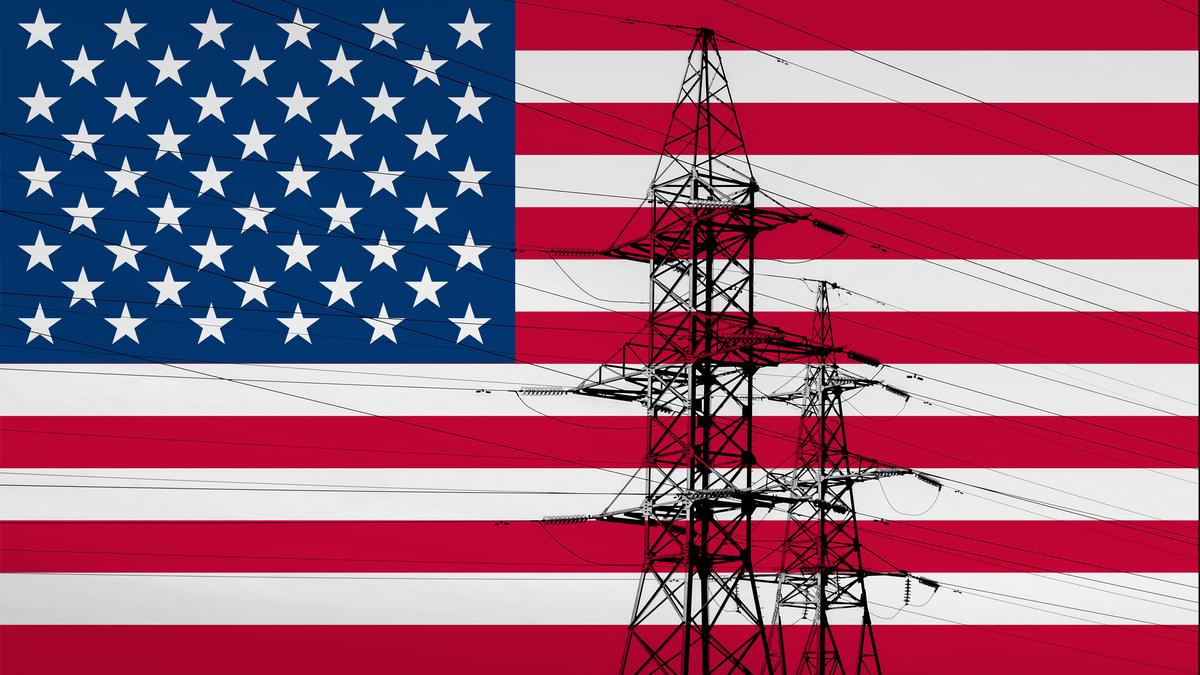
- 09 May 2025
In News:
U.S. Vice-President J.D. Vance recently reaffirmed strong bilateral engagement with India in the domains of energy and defence. In parallel, India underscored the need to prioritiseenergy security, technology transfer, and collaboration on critical minerals as pillars of this strategic partnership.
Major India–U.S. Energy Initiatives
- Strategic Clean Energy Partnership (SCEP):Facilitates cooperation across bioenergy, solar power, hydrogen fuels, and energy efficiency measures.
- Initiative on Critical and Emerging Technology (iCET):Focused on advanced technologies such as clean energy, Artificial Intelligence (AI), quantum computing, and Small Modular Reactors (SMRs).
- Civil Nuclear Cooperation:Aims to enhance technology exchange and investments aligned with India’s goal of achieving 100 GW of nuclear capacity by 2047.
- Critical Minerals MoU (2024):Establishes a framework for resilient and transparent supply chains for rare earth elements and critical minerals, along with potential third-country investment opportunities.
Rationale for Strengthening the Energy Partnership
- Energy Security:India’s transition to a $5 trillion economy requires uninterrupted, affordable energy access.
?Example: India's energy import bill reached $153 billion in FY 2023–24, highlighting the need for long-term partnerships. - Climate Commitments:To achieve net-zero emissions by 2070, India must scale up investments in low-carbon technologies, including nuclear, renewables, and green hydrogen.
- Mineral Supply Chain Diversification:With China dominating over 90% of rare earth processing, India seeks reliable and democratic supply partnerships to support its clean energy transition.
- Infrastructure and Financing Needs:Developing nuclear energy infrastructure alone could demand over $180 billion by 2047, requiring foreign capital, joint ventures, and technology collaboration.
Proposed Roadmap for Enhancing Bilateral Energy Ties
- Legal Reform:Revisit the Civil Liability Act to facilitate private sector participation in India's nuclear sector.
?Example: Proposed transfer of SMR technology from Holtec to Indian companies (e.g., L&T, Tata Consulting) requires legal assurances. - Strategic Mineral Reserves Collaboration:Joint stockpiling via India’s Strategic Petroleum Reserves and the U.S. National Defense Stockpile can buffer supply shocks.
- India–U.S. Mineral Exchange Platform:Launch a digital trade and traceability platform using blockchain technology to enhance transparency and co-investment.
- Leverage the Quad Partnership:Deepen trilateral mineral partnerships with Australia and Japan, focusing on processing facilities, R&D hubs, and outreach to resource-rich African nations.
- Accelerate Nuclear Rollout:Standardise nuclear reactor designs, streamline regulatory approvals, and aim to install 5–6 GW of new nuclear capacity annually by the early 2030s.
- Green Financing Mechanisms:Develop innovative funding frameworks such as green bonds, blended finance, and leverage multilateral funding for clean energy and mineral projects.
Lagrangian Growth-Advection Model
- 09 May 2025
In News:
In a significant advancement for climate science, researchers from the Monterey Bay Aquarium Research Institute (MBARI) and Florida State University have developed a novel method to more accurately estimate oceanic carbon export using satellite data. This method, called the Lagrangian Growth-Advection Model, enhances our understanding of the ocean’s role in sequestering atmospheric carbon dioxide (CO?).
What is the Lagrangian Growth-Advection Model?
The model integrates Lagrangian tracking (which follows individual fluid parcels in motion) with advection (the horizontal movement of water) and biological growth processes. This innovative framework allows scientists to trace the journey of phytoplankton and the associated carbon flux as they move with ocean currents—particularly in dynamic regions such as the California Current upwelling system.
Key Innovations:
- Captures Spatial and Temporal Lags: Unlike conventional models, this approach accounts for delays between carbon production at the surface and its eventual export to deeper waters.
- Incorporates Biological Complexity: The model factors in zooplankton activity, biological succession, and advection of plankton communities, offering a more comprehensive representation of the carbon cycle.
- Beyond Ocean Colour: Traditional models rely heavily on ocean colour data, which is limited to surface chlorophyll concentration. The new model goes beyond this by incorporating additional ecological and physical processes.
Validation and Performance:
The model’s predictions were validated against deep-sea carbon flux measurements, particularly at Station M—a long-term ocean floor observatory operated by MBARI. Remarkably, it explained episodic pulses of carbon export previously unaccounted for by older models, marking a significant improvement in understanding carbon dynamics.
Why this Matters:
The biological pump—the process by which marine organisms convert dissolved CO? into organic carbon that eventually sinks to the deep ocean—is a crucial mechanism for long-term carbon sequestration. The ocean currently absorbs a substantial share of anthropogenic CO? emissions, helping mitigate global warming. Accurate estimates of this process are vital for climate modelling and carbon budgeting.
Existing satellite-based models fall short in capturing the subsurface processes and time-lagged carbon fluxes that significantly impact overall carbon export. The Lagrangian Growth-Advection Model addresses these limitations, offering a more realistic and dynamic understanding of the ocean’s carbon cycle.
Global Space Exploration Conference (GLEX) 2025
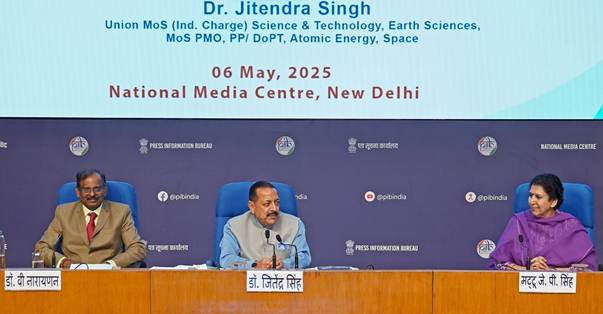
- 09 May 2025
In News:
India is set to host the 12th edition of the Global Space Exploration Conference (GLEX) 2025 from 7th to 9th May 2025 in New Delhi, marking a significant milestone in the nation's emergence as a key global player in space exploration.
Key Highlights of GLEX 2025:
- Theme: “Reaching New Worlds: A Space Exploration Renaissance”
- The conference theme underscores a renewed global commitment to innovation, inclusivity, and international collaboration in space science and technology.
- Organisers:
- International Astronautical Federation (IAF) – The world’s foremost space advocacy organisation.
- Indian Space Research Organisation (ISRO) – Serving as the primary host, reflecting India’s growing stature in the global space ecosystem.
- Astronautical Society of India (ASI) – Acting as the co-host and supporting India's role in global space diplomacy.
GLEX 2025 is expected to bring together global experts, policymakers, scientists, and industry leaders to discuss cutting-edge advancements, collaborative missions, and the future of space exploration. It will also highlight India's evolution from a regional space power to a central figure in the international space community.
About the International Astronautical Federation (IAF):
- Established: 1951
- Membership: Over 500 organisations from 78 countries, including major space agencies, private companies, academic institutions, and research bodies.
- Vision: “A space-faring world cooperating for the benefit of humanity”
- Motto: “Connecting @ll Space People”
- The IAF promotes global space cooperation and knowledge exchange. Through platforms like GLEX, it fosters dialogue on programmatic, technical, and policy aspects of space missions.
Significance for India:
GLEX 2025 reflects India’s growing prominence in the global space domain, reaffirming its commitment to peaceful space exploration and international collaboration. The event offers a valuable opportunity for India to showcase its achievements, build new partnerships, and contribute to shaping the future of global space policy and science.
Alcatraz Island
- 08 May 2025
In News:
The President of the United States has recently instructed his administration to undertake a project to rebuild and expand Alcatraz, the notorious prison that has been closed for over six decades. This historic site is located on a remote island off the coast of San Francisco, California.
About Alcatraz Island
Alcatraz Island, often referred to as “The Rock,” is a small rocky island situated in San Francisco Bay, California, covering approximately 22 acres (9 hectares).
Historical Overview
- 1849: The island was sold to the U.S. government.
- 1854: Alcatraz became home to the first lighthouse on California’s coast.
- 1859: The first permanent army troops were stationed on the island.
- 1861: Alcatraz was converted into a military prison.
- 1907: It was officially designated as the Pacific Branch of the U.S. Military Prison.
- 1933: The U.S. Army vacated the island.
- 1934–1963: Alcatraz functioned as a federal prison, housing some of America’s most dangerous criminals.
Prison Details
The prison had a capacity to hold over 330 inmates in cells measuring approximately 10 feet by 4.5 feet (3 meters by 1.5 meters). However, the actual number of prisoners rarely exceeded 260 at any given time. Known as the most secure and inescapable prison in the United States, Alcatraz was famous for its isolation and strict security measures. Although a few inmates attempted to escape, the harsh currents of San Francisco Bay made survival unlikely.
Closure and Current Status
Due to the high costs of upkeep, the prison was officially closed in March 1963. In 1972, Alcatraz was incorporated into the newly established Golden Gate National Recreation Area and was opened to the public. Today, it remains a popular tourist destination, attracting visitors from around the world.
Organization of Islamic Cooperation (OIC)
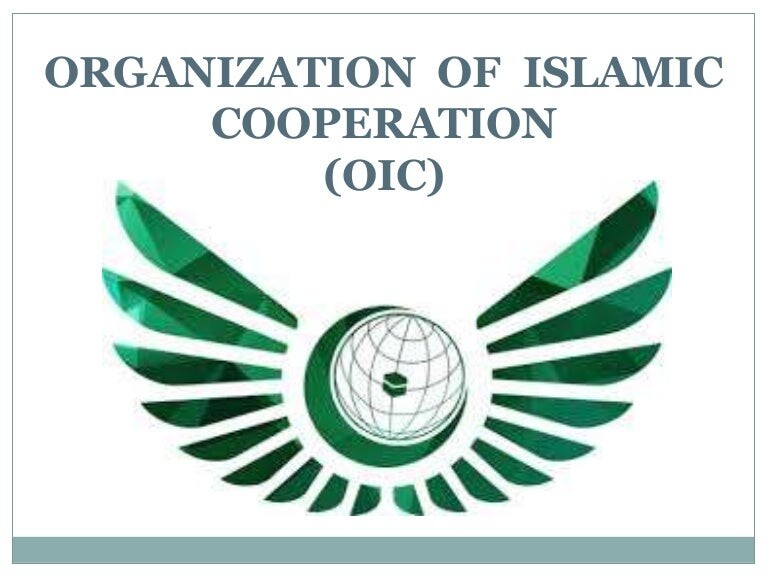
- 08 May 2025
About the OIC
The Organization of Islamic Cooperation (OIC) is the world’s second-largest intergovernmental organization after the United Nations, comprising 57 member states across four continents. It was established on September 25, 1969, following the historic summit held in Rabat, Morocco, which was convened in response to the arson attack on the Al-Aqsa Mosque in occupied Jerusalem.
Objectives and Purpose
The OIC’s primary goals are to:
- Preserve and promote Islamic values.
- Safeguard the national sovereignty and independence of its member states.
- Contribute to international peace and security.
- Serve as the collective voice of the Muslim world, protecting their interests across economic, social, and political spheres.
Structure and Headquarters
- The OIC’s headquarters is located in Jeddah, Saudi Arabia.
- Its official languages are Arabic, English, and French.
Membership
Notable member countries include Afghanistan, Bahrain, Bangladesh, Egypt, Indonesia, Iran, Iraq, Jordan, Kuwait, Lebanon, Libya, Malaysia, Maldives, Morocco, Niger, Oman, Pakistan, the Palestinian Authority, Qatar, Saudi Arabia, Sudan, Turkey, Uganda, United Arab Emirates, and Yemen, among others.
Principal Organs of the OIC
- Islamic Summit Conference (ISC):The highest authority of the OIC, meeting every three years to set the organization’s policies and strategic direction.
- Council of Foreign Ministers (CFM):Convening annually, the CFM reviews and oversees the implementation of decisions made by the Islamic Summit.
- General Secretariat:The executive branch responsible for executing the resolutions of the ISC and CFM.
Additionally, the OIC has established various ministerial-level committees—some chaired by heads of state—to coordinate cooperation among member countries in political, economic, cultural, social, spiritual, and scientific fields.
Partnerships and Global Engagement
The OIC collaborates closely with international organizations, including all specialized agencies of the United Nations, as well as governments and civil society organizations (CSOs). These partnerships help address concerns affecting its member states and the global Muslim community.
INS Sharda
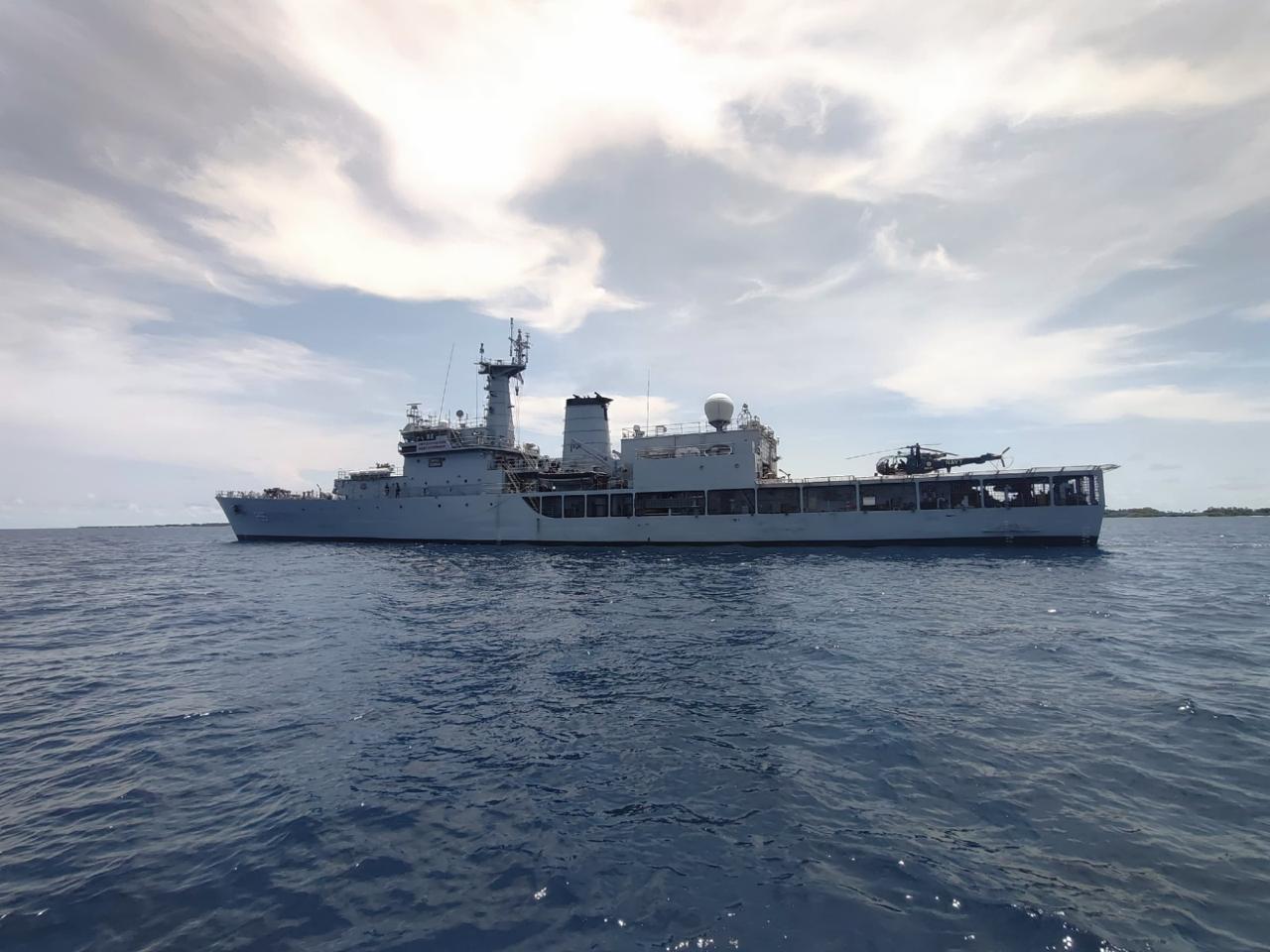
- 08 May 2025
In News:
The Indian Navy’s offshore patrol vessel, INS Sharda, has reached Maafilaafushi Atoll in the Maldives to participate in its first-ever Humanitarian Assistance and Disaster Relief (HADR) exercise, scheduled from May 4 to May 10, 2025.
Strengthening Regional Maritime Cooperation and Disaster Preparedness
This exercise is a key part of India’s strategic efforts to enhance regional maritime cooperation and bolster disaster readiness within the Indian Ocean Region (IOR). It underscores India’s steadfast commitment to its “Neighbourhood First” Policy, which recognizes the Maldives as a close maritime neighbour with deep strategic and cultural ties.
Aligning with the MAHASAGAR Vision
The HADR exercise supports the recently unveiled MAHASAGAR vision—Mutual and Holistic Advancement for Security and Growth Across Regions—introduced by the Prime Minister during the Mauritius visit. MAHASAGAR reaffirms India’s role as a net security provider and first responder in the Indian Ocean, building on the earlier SAGAR doctrine (Security and Growth for All in the Region). Both frameworks emphasize inclusive security, regional cooperation, and disaster resilience.
Objectives of the HADR Exercise
According to the Indian Navy, the exercise aims to:
- Enhance interoperability between the Indian Navy and the Maldives National Defence Force (MNDF).
- Conduct joint drills focusing on Search and Rescue (SAR), disaster response coordination, logistical support, and medical aid.
- Facilitate training programs for capacity building among personnel.
- Engage with local communities to raise awareness and strengthen disaster preparedness.
This maiden HADR exercise by INS Sharda marks a significant step toward deepening India-Maldives maritime collaboration and regional disaster management capabilities.
Metal-Free Catalyst for Hydrogen Fuel Production
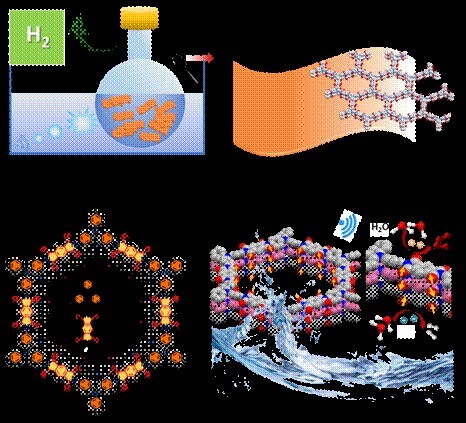
- 08 May 2025
In News:
In a significant breakthrough for clean energy technology, Indian scientists have engineered a metal-free catalyst capable of generating hydrogen fuel by harnessing mechanical energy. This innovation marks a major step forward in sustainable hydrogen production, aligning closely with India’s National Green Hydrogen Mission and its goal to lead in green energy solutions.
What is the Metal-Free Catalyst?
The catalyst is a specially designed donor-acceptor covalent organic framework (COF) that functions as a piezocatalyst without relying on any metal components. It can efficiently split water molecules to produce hydrogen gas (H?) when subjected to mechanical forces such as vibrations or pressure.
Development and Collaboration
This pioneering catalyst was developed at the Jawaharlal Nehru Centre for Advanced Scientific Research (JNCASR) in Bengaluru, under the leadership of Professor Tapas K. Maji. The project was carried out in collaboration with the Indian Institute of Science Education and Research (IISER) Pune and Wroc?aw University of Science and Technology in Poland.
Key Features of the Catalyst
- Metal-Free Composition: Made entirely from organic molecules, specifically TAPA (donor) and PDA (acceptor), connected through stable imide bonds.
- Ferrielectric Ordering (FiE): This internal property creates strong electric fields within the material, driving the catalytic water-splitting process.
- Porous, Sponge-like Structure: Enhances water permeability and promotes efficient separation of charges generated during the reaction.
- Mechanically Activated: The catalyst produces electron-hole pairs when exposed to mechanical pressure, enabling effective hydrogen generation.
Significance and Impact
- Environmentally Friendly: Eliminates the need for expensive and potentially harmful metal-based catalysts by using sustainable organic materials.
- Energy-Efficient: Utilizes ambient mechanical energy sources, such as vibrations or applied pressure, to power hydrogen production.
- Supports India’s Clean Energy Goals: Advances the objectives of the National Green Hydrogen Mission, strengthening India’s position in global clean energy innovation and reducing dependence on fossil fuels.
- Scalable and Cost-Effective: Offers a practical and affordable alternative to conventional metal-based hydrogen production technologies, making it suitable for widespread adoption.
Rare 7th-Century Old Kannada Inscription unearthed at Madapura Lake, Karnataka
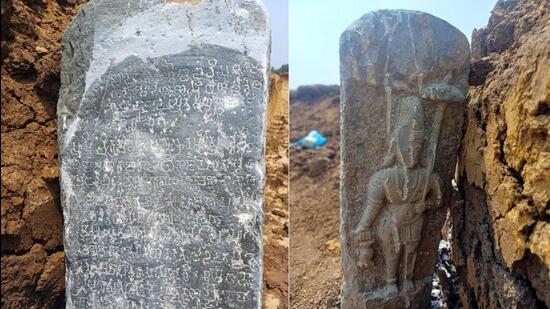
- 07 May 2025
In News:
A rare 7th-century Old Kannada inscription from the reign of Vikramaditya I of the Badami Chalukyas has been discovered at Madapura Lake in Davangere, Karnataka. The inscription sheds light on taxation, land grants, and regional governance during his rule.
About the Badami Chalukyas
- Origins: Emerged as a regional Kannada power claiming descent from Ayodhya to establish legitimacy.
- Capital:Vatapi (present-day Badami, Karnataka).
- Notable Rulers and Political History:
- Pulakesin I (543–566 CE): Founder of the dynasty; fortified Badami.
- Pulakesin II (609–642 CE): Most celebrated ruler; defeated Harshavardhana at the Narmada river; established diplomatic contacts with Persia (depicted in Ajanta caves).
- Vikramaditya I (644–681 CE): Son of Pulakesin II; reclaimed Badami from Pallavas and expanded influence over southern kingdoms like the Cholas, Pandyas, and Keralas.
- Administration:
- Centralised monarchy with limited autonomy granted to villages.
- Economy relied on land revenue and military conquests.
- Maintained a naval fleet—Pulakesin II had around 100 ships.
- Religion:Patronised Shaivism, Vaishnavism, Shaktism, and Jainism. Vikramaditya I and others made donations to Jain institutions; Pulakesin I performed Ashvamedha Yajna.
- Art and Architecture:
- Developed the Vesara style, a fusion of northern Nagara and southern Dravida temple architecture.
- Constructed rock-cut and structural temples in Aihole, Badami, and Pattadakal.
About Vikramaditya I
- Background: Son of Pulakesin II; ascended the throne during a period of political turmoil following his father's death and Pallava invasion.
- Military Achievements:
- Defeated Narasimhavarman I of the Pallavas, who had earlier seized Badami.
- Reunited the fractured Chalukya empire, restoring its former prestige.
- Subdued southern powers including the Cholas, Pandyas, and Keralas, consolidating control over the southern Deccan.
- Political Consolidation:
- Re-established central authority across Karnataka and surrounding regions.
- Appointed loyal feudatories, such as Singhavenna (mentioned in the new Davangere inscription), to manage local governance.
- Legacy:
- Known by titles such as Rajamalla (King of Kings) and Yuddhamalla (Warrior King).
- His reign marked a revival of Chalukya power and paved the way for cultural and architectural achievements under his successors Vikramaditya II and Kirtivarman II.
India-Angola Bilateral Talks and Strategic Cooperation
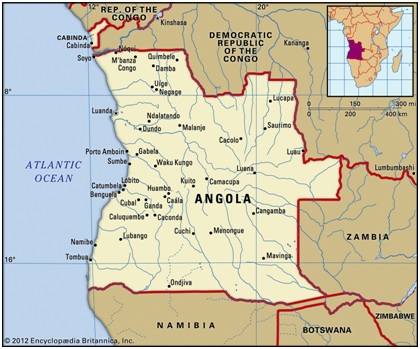
- 07 May 2025
In News:
The Prime Minister of India recently held bilateral talks with Angolan President João Lourenço in New Delhi. During the meeting, India offered Angola a $200 million defence credit line and discussed expanding cooperation in sectors such as infrastructure, defence, and space technology. The visit also commemorates the 40th anniversary of diplomatic relations between India and Angola.
About Angola
- Location: Southwestern Africa, bordered by the Atlantic Ocean to the west.
- Capital: Luanda, a major coastal port city.
- Neighbouring countries: Republic of the Congo, Democratic Republic of the Congo, Zambia, Namibia, and the Atlantic Ocean.
- Special territory: Includes the exclave of Cabinda, located north of the main territory.
Geographical Features
- Major Plateaus:Bié Plateau (~2,600 m), Huíla Plateau (~2,300 m), Malanje Highlands.
- Highest Point: Mount Moco (2,620 m or 8,596 ft) near Huambo.
- Rivers:
- Cuanza (Kwanza): Largest river entirely within Angola.
- Cunene River: Forms part of the border with Namibia.
- Cuango River: Tributary of the Congo River.
- Other rivers drain into the Zambezi and Okavango river systems.
- Desert: Southwest Angola forms part of the Namib Desert.
- Climate: Tropical with distinct rainy and dry seasons, influenced by the cold Benguela ocean current.
Demographics and Economy
- Ethnic groups: Predominantly Bantu-speaking, including Ovimbundu, Kimbundu, and Bakongo communities.
- Economic importance:
- One of Africa’s leading oil producers.
- Rich mineral resources including diamonds, iron ore, copper, and gold.
- The northeast is notable for diamond deposits found in river gravels.
ECINET: India’s Unified Digital Platform for Elections
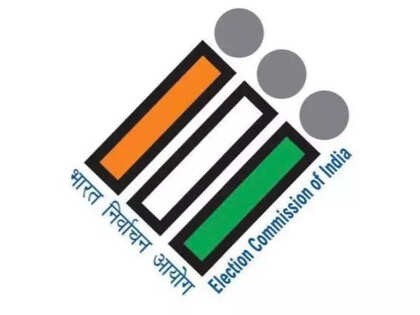
- 07 May 2025
In News:
The Election Commission of India (ECI) is set to launch ECINET, a single, unified digital platform aimed at consolidating and simplifying election-related services for voters, officials, political parties, and civil society organizations.
About ECINET:
ECINET will merge over 40 existing mobile and web applications—including the Voter Helpline, cVIGIL, Suvidha 2.0, ESMS, Saksham, KYC App, Voter Turnout app, Know Your Candidate app, and election results app—into one integrated system. This platform will also serve election officials such as Electoral Registration Officers and Booth Level Officers by providing a comprehensive interface.
Objectives:
- Simplify access to electoral services through a single window and one login (single sign-on).
- Eliminate the redundancy of multiple applications and multiple logins.
- Provide real-time access to verified and authenticated election data for all stakeholders.
- Strengthen electoral infrastructure by fostering digital innovation and integration.
- Enhance cybersecurity through robust testing and protocols.
Key Features:
- Unified Platform: Consolidates all election-related apps into one.
- Single Sign-On: One login credential for all services reduces confusion.
- Cross-Device Compatibility: Accessible on smartphones and desktops alike.
- Modern User Interface: Intuitive and user-friendly design.
- Data Integrity: Only authorized ECI officials can enter data, with statutory forms prevailing in case of discrepancies.
- Robust Cybersecurity: Rigorous trials to ensure safety and performance.
- Nationwide Coverage: Designed to serve nearly 100 crore voters and the entire electoral administration.
Timeline:
The ECINET platform is in advanced stages of development and testing and is expected to be launched before the Bihar Assembly elections later this year.
Vizhinjam International Seaport
- 05 May 2025
In News:
The Vizhinjam International Seaport in Kerala is set to be inaugurated by the Prime Minister, marking a significant milestone in India’s maritime infrastructure.
Key Highlights
- Location: Situated at Vizhinjam, near Thiruvananthapuram in Kerala.
- Type: India’s first dedicated transshipment port and semi-automated seaport.
- Development Model: Built under the Public-Private Partnership (PPP) model at an estimated cost of ?8,900 crore. The port is operated by the Adani Group, while the Kerala Government retains majority ownership.
Technical Features
- Deepest Breakwater in India: Spanning about 3 km with a natural depth of ~20 metres, enabling accommodation of large container vessels.
- Minimal Littoral Drift: Reduced sediment movement along the coast helps lower maintenance costs significantly.
- AI-Powered Vessel Traffic Management: India’s first indigenous VTMS system developed in collaboration with IIT Madras.
- Advanced Automation:
- Fully automated yard cranes.
- Remotely operated ship-to-shore cranes for efficient and safe cargo handling.
Strategic Importance
- Proximity to Global Shipping Lanes: Located just 10 nautical miles from a key international East-West shipping route.
- Boost to Domestic Transshipment:
- Currently, around 75% of India’s transshipment traffic is handled by foreign ports such as Colombo and Singapore.
- Vizhinjam is expected to reduce foreign exchange outflows and increase India's share in global maritime trade.
- International Connectivity: The port is now connected to global maritime hubs like Shanghai, Singapore, and Busan.
Future Prospects
- Multi-Modal Integration:
- Direct linkage to National Highway-66 (NH-66).
- Kerala’s first cloverleaf interchange for seamless traffic movement.
- An upcoming railway link to integrate the port with the national railway grid.
- Vision: Aims to become a major multi-modal logistics hub supporting India’s broader maritime and trade ambitions under Sagarmala and PM Gati Shakti initiatives.
Annual Survey of Services Sector Enterprises (ASSSE)
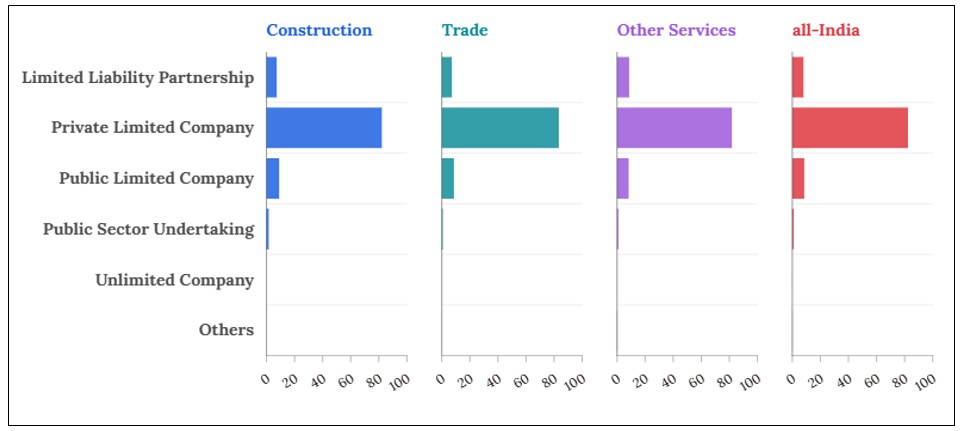
- 05 May 2025
In News:
The Ministry of Statistics and Programme Implementation (MoSPI) recently released findings from a pilot study on the Annual Survey of Services Sector Enterprises (ASSSE). This initiative aims to fill a crucial data gap regarding India’s incorporated service sector, which is not currently covered by regular surveys like the Annual Survey of Unincorporated Sector Enterprises (ASUSE).
Significance of the Services Sector
- Contribution to Economy: The services sector contributed ~55% of India's Gross Value Added (GVA) in FY 2024–25, up from 50.6% in FY14.
- Employment: It employs around 30% of India’s workforce, spanning industries like IT, finance, education, tourism, and healthcare.
- Trade: India’s services exports stood at USD 280.94 billion (April–Dec 2024). In ICT services, India is the 2nd-largest global exporter, accounting for 10.2% of global exports.
- FDI Magnet: The sector attracted USD 116.72 billion in FDI (April 2000–Dec 2024)—about 16% of total FDI inflows.
- Support to Digital India & Urbanization: The sector underpins the Digital India initiative and Smart Cities Mission by enabling digital payments, urban mobility, e-governance, and waste management.
About the ASSSE Pilot Study
Purpose & Objectives
- To test the suitability of the GSTN (Goods and Services Tax Network) database as a sampling frame.
- To develop robust survey instruments and methodology for a full-scale annual survey starting January 2026.
- To gather data on economic characteristics, employment, and financial indicators from incorporated enterprises under:
- Companies Act, 1956/2013
- Limited Liability Partnership (LLP) Act, 2008
Survey Coverage
- Conducted in two phases:
- Phase I (May–Aug 2024): Verified enterprise data for 10,005 units.
- Phase II (Nov 2024–Jan 2025): Collected detailed data from 5,020 enterprises under the Collection of Statistics Act, 2008.
- Data collected for FY 2022–23 using CAPI (Computer-Assisted Personal Interviewing).
Key Findings:
Enterprise Type Distribution
- Private Limited Companies: 82.4%
- Public Limited Companies and LLPs: ~8% each
Size-Class Analysis (FY 2022–23)
Output Class (?) % Share of Gross Value Added (GVA) % Share of Fixed Assets % Share of Employment
< 10 crore 1.19% 2.64% 9.28%
10–100 crore 9.45% 9.58% 20.03%
100–500 crore 19.90% 25.00% 33.73%
> 500 crore 69.47% 62.77% 36.96%
- Large enterprises (output > ?500 crore) dominate in assets, value addition, and compensation paid, but smaller units employ over 63% of the total workforce in the sample.
Additional Establishments
- 28.5% of enterprises reported having additional business locations within the state.
- Highest in the Trade sector (41.8%).
Insights and Challenges from the Pilot
- Suitability of GSTN as Sampling Frame: Confirmed.
- Challenges Faced:
- Data retrieval from enterprises with headquarters in other states.
- Centralized data (CIN-based) posed difficulty in disaggregating state-level data.
- Positive Outcomes:
- High response rate and cooperation.
- Survey instruments found largely clear and functional.
Challenges Faced by the Services Sector
- Skill Gaps:
- Only 51.25% of youth are employable (Economic Survey 2023–24).
- Merely 5% of workforce is formally skilled (WEF).
- Informality:
- About 78% of service jobs were informal in 2017–18.
- Gig workers lack social protection.
- Global Competition:
- Visa restrictions (e.g., H-1B in the US).
- Competing hubs: Philippines, Vietnam.
- Rising IT wage costs in India.
- Infrastructure Deficiencies:
- Inadequate AI/ML adoption.
- Digital divide persists in rural and marginalized MSMEs.
- Post-COVID Recovery:
- Inbound tourism yet to reach pre-pandemic levels (90% of 2019 arrivals in H1 2024).
Way Forward
- Upskilling Initiatives:
- Expand Skill India Digital and PMKVY 4.0.
- Promote Prime Minister Internship Scheme (PMIS) for bridging academia-industry gap.
- Boosting Global Competitiveness:
- Negotiate FTAs with EU, UK, Australia.
- Expand Global Capability Centres (GCCs).
- Digital Infrastructure & Security:
- Strengthen cybersecurity frameworks and promote secure cloud adoption.
- Improve digital literacy, especially in financial services.
- Decentralized Growth:As per NITI Aayog, promote services sector in Tier-2 and Tier-3 cities with better infrastructure and connectivity.
Exercise DUSTLIK
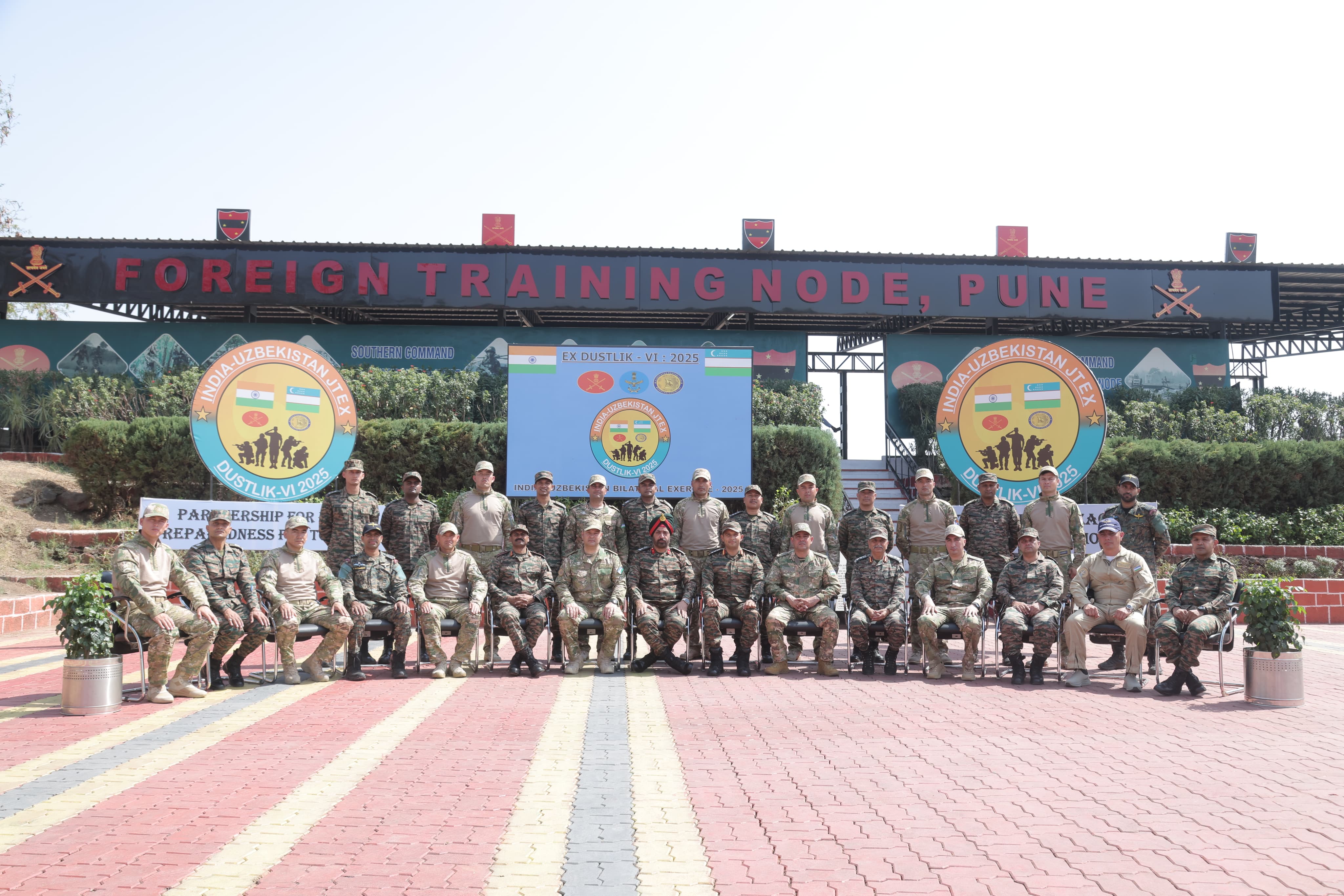
- 05 May 2025
In News:
The 6th edition of Exercise DUSTLIK, a bilateral joint military exercise between India and Uzbekistan, was recently held at the Foreign Training Node in Aundh, Pune. The previous edition (2024) was conducted in Termez, Uzbekistan.
Key Highlights:
- Exercise Theme: Joint Multi-Domain Sub-Conventional Operations in Semi-Urban Terrain.
- Aimed at simulating counter-terrorism operations, especially in scenarios involving territorial capture by terrorist groups.
- Indian contingent: 60 personnel from the JAT Regiment and the Indian Air Force (IAF).
- Uzbek contingent: Personnel from the Uzbekistan Army.
Core Activities:
- Establishment of a Joint Operations Centre at the battalion level.
- Execution of population control, raids, search-and-destroy operations.
- Use of air assets: drones, helicopters for reconnaissance, Special Heliborne Operations (SHBO), Small Team Insertion and Extraction (STIE).
- Focus on counter-UAS (unmanned aerial systems) measures and logistics support in hostile conditions.
Objectives:
- Enhance interoperability, tactical coordination, and operational synergy between the two armies.
- Promote defence cooperation and strengthen bilateral relations between India and Uzbekistan.
- Exchange of best practices in conducting joint sub-conventional operations.
About Uzbekistan:
- Doubly landlocked country in Central Asia, located between the Syr Darya and Amu Darya rivers.
- Borders: Kazakhstan, Kyrgyzstan, Tajikistan, Afghanistan, and Turkmenistan.
Operation Hawk 2025
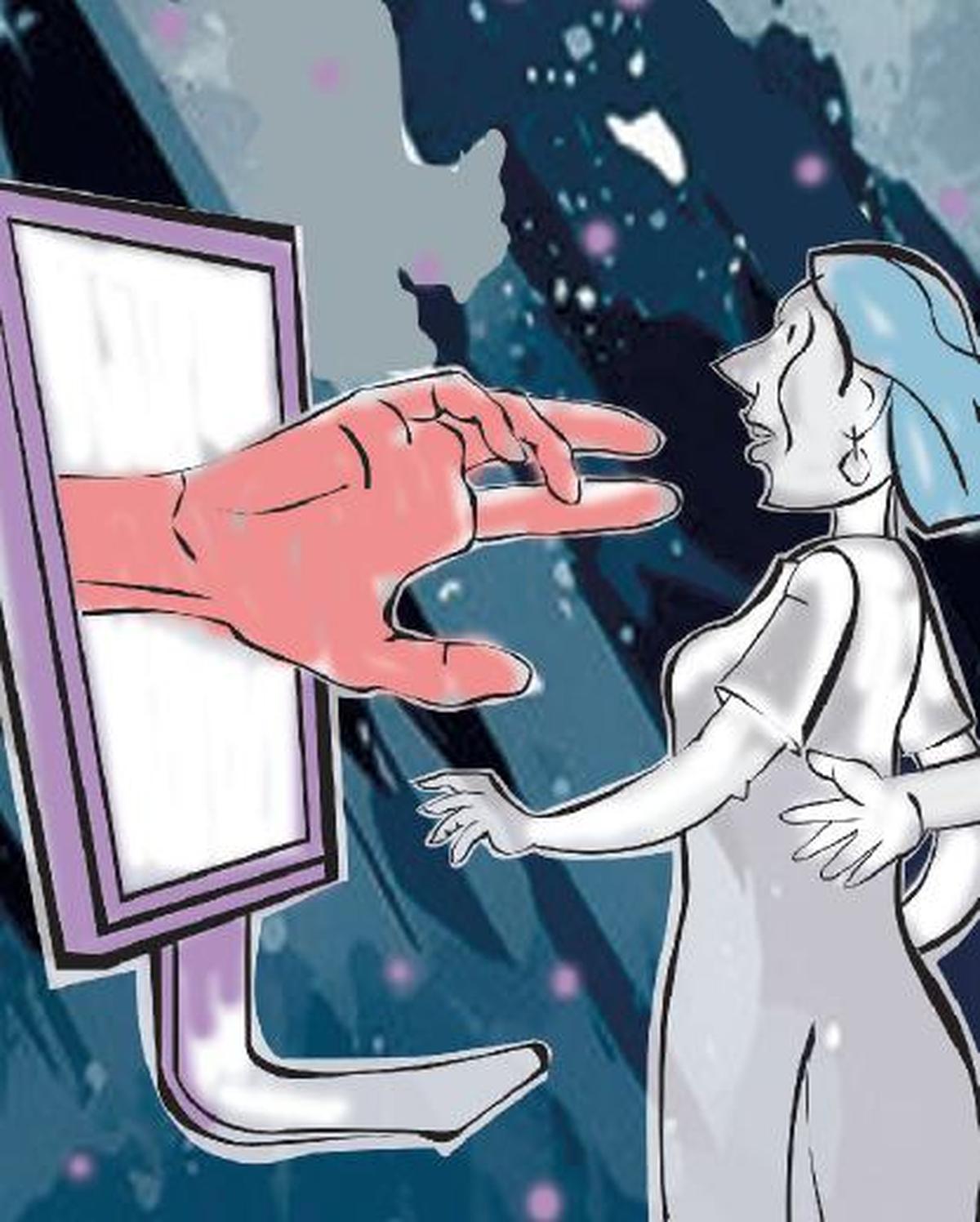
- 04 May 2025
In News:
The Central Bureau of Investigation (CBI) has launched Operation Hawk in 2025 to combat international cybercrime networks involved in online child sexual exploitation (OCSE). The operation led to arrests in Delhi and Mumbai, following inputs from foreign agencies including the United States.
About Operation Hawk
Feature Details
Launched By CBI’s International Operations Division
Year of Launch 2025
Main Objective Target and dismantle cybercriminal networks engaged in OCSE
Scope International cooperation, digital forensics, and prosecution
Key Objectives
- Disrupt organized cyber-pedophile networks.
- Enhance coordination with agencies like Interpol, FBI, and foreign governments.
- Strengthen legal action under IPC, IT Act, and POCSO Act.
- Address complaints involving Indian nationals from foreign jurisdictions.
- Boost cross-border digital evidence collection and swift response systems.
Previous Related Operations
- Operation CARBON (2021):Targeted dark web CSAM (Child Sexual Abuse Material) users globally.
- Operation MEGH CHAKRA (2022):Pan-India action based on Interpol alerts; resulted in large-scale arrests and digital data seizures.
India’s First Inter-State Cheetah Conservation Corridor
- 04 May 2025
In News:
Rajasthan has joined hands with Madhya Pradesh to develop India’s first inter-state cheetah conservation corridor, a landmark initiative under the Cheetah Reintroduction Project. The corridor will facilitate the safe movement of cheetahs across a 17,000 sq. km protected landscape, enhancing conservation and habitat connectivity.
Key Features of the Cheetah Conservation Corridor
Aspect Details
Total Area 17,000 sq. km (MP: 10,500 sq. km; Rajasthan: 6,500 sq. km)
States Involved Madhya Pradesh and Rajasthan
Supported by National Tiger Conservation Authority (NTCA), Wildlife Institute of India (WII)
MoU Status In progress between Chief Ministers of MP and Rajasthan
Geographical Scope and Key Sites
- PalpurKuno National Park (MP):Core site for cheetah reintroduction; located in Sheopur district.
- Gandhi Sagar Sanctuary (MP):Being developed as a second habitat for cheetahs; located in Mandsaur district along the Chambal River.
- Mukundara Hills Tiger Reserve (Rajasthan):Proposed extension site; comprises parts of Darrah, Jawahar Sagar, and Chambal sanctuaries in Kota division.
- Rajasthan Districts Involved:Kota, Bundi, Baran, Jhalawar, Sawai Madhopur, Karauli, Chittorgarh
- Proposed Future Expansion:Forest regions of Jhansi and Lalitpur in Uttar Pradesh
Objectives and Benefits
- Inter-State Wildlife Connectivity:India’s first corridor linking cheetah habitats across state borders.
- Seamless Migration:Enables cheetahs to roam freely between reserves, mimicking natural ecological patterns.
- Ecological Restoration:Aims to revive and conserve India’s arid grassland ecosystems, which are essential habitats for cheetahs.
- Federal Conservation Model:Demonstrates cooperative federalism in wildlife management and biodiversity conservation.
- Global Recognition:Touted as a unique conservation model in Asia, aligning with Convention on Biological Diversity (CBD) targets.
Digital Access now a Fundamental Right
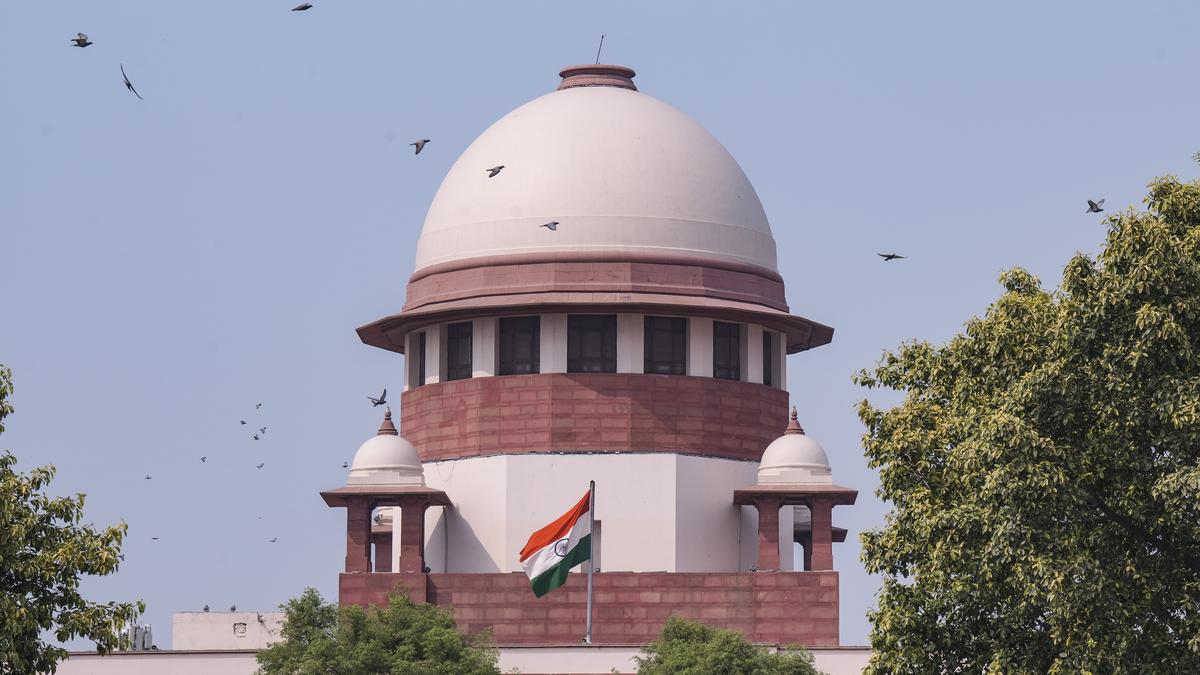
- 03 May 2025
In News:
Recently, the Supreme Court of India, in the case of Amar Jain v. Union of India &Ors., declared that inclusive digital access to e-governance and welfare systems is an integral part of the fundamental right to life and liberty under Article 21 of the Constitution. The Court issued a set of 20 binding directions to enhance the accessibility of digital services, especially the Know Your Customer (KYC) process, for persons with disabilities (PwDs) and other marginalized groups.
Background of the Case
The ruling arose from petitions filed which highlighted that digital KYC processes, which rely heavily on visual and facial inputs, were discriminatory and inaccessible to individuals with visual impairments or facial disfigurements. This impeded their access to banking, welfare schemes, and essential services.
Key Supreme Court Observations
- Digital access is part of Article 21: The right to life and liberty must now be interpreted to include meaningful digital access, particularly as governance, education, and financial services shift online.
- Constitutional mandate, not policy choice: Bridging the digital divide is not discretionary but a constitutional obligation under Articles 14, 15, 21, and 38.
- Substantive Equality: Digital services must be inclusive and equitable, particularly for:
- Persons with Disabilities (PwDs)
- Rural and remote communities
- Linguistic minorities
- Senior citizens
- Economically weaker sections
- Exclusion through technology: Digital platforms, in their current form, further alienate historically disadvantaged groups rather than empowering them.
Key Directives Issued by the Court
- Revise digital KYC norms to be PwD-inclusive.
- Reserve Bank of India (RBI) and other regulators must ensure universal accessibility.
- Mandate accessibility audits by certified professionals.
- Appoint nodal officers in each department to monitor compliance.
- Include PwDs in digital platform design processes.
- Ban discriminatory design features that rely solely on facial inputs.
Relevant Constitutional Provisions
Article Provision
Article 14 Equality before law
Article 15 Prohibition of discrimination
Article 21 Right to life and personal liberty
Article 38 Directive for securing social justice and reducing inequalities
Precedents in Digital Rights Jurisprudence
- Maneka Gandhi v. Union of India (1978): Expanded Article 21 to include fair, just, and reasonable procedures.
- Faheema Shirin v. State of Kerala (2019): First Indian case to recognize right to internet access as part of Right to Life and Right to Education (Article 21A).
- Anuradha Bhasin v. Union of India (2020): Held that freedom of speech (Article 19(1)(a)) and right to trade (Article 19(1)(g)) apply to the internet.
Barriers to Digital Empowerment of PwDs
- Digital Literacy Gap: PwDs are underrepresented in programs like PMGDISHA.
- Weak Enforcement: Accessibility mandates under the Rights of Persons with Disabilities Act, 2016 are poorly implemented.
- Limited Assistive Technology (AT): Lack of affordable tools for facially disfigured or visually impaired individuals.
- Design Exclusion: Platforms that depend on facial cues (e.g., blinking, alignment) exclude acid attack survivors and visually impaired users.
Way Forward: Recommendations for Inclusive Digital Access
- Accessible Digital Infrastructure:
- Promote screen readers, voice commands, haptic navigation, and AI-based assistive tech under Digital India.
- Adhere to Web Content Accessibility Guidelines (WCAG).
- Disability-Focused Digital Literacy:
- Collaborate with tech giants like Google/Microsoft to provide training in assistive technologies.
- Expand schemes like PMGDISHA to include PwD-specific modules.
- Disability-Sensitive Urban Planning:
- Incorporate assistive tech into Smart City projects.
- Public infrastructure should have Braille, audio, and sign language-based digital signage.
- Inclusive Innovation Lab:
- Establish Public-Private Innovation Hubs for developing affordable accessibility tech.
- Encourage startups and NGOs to co-create need-based digital solutions for PwDs.
National Security Advisory Board (NSAB)
- 03 May 2025
In News:
The Government of India has reconstituted the National Security Advisory Board (NSAB) with former R&AW chief Alok Joshi appointed as its Chairman. The move comes in the backdrop of increasing national security threats, including the recent terrorist attack in Pahalgam, which prompted a series of high-level security meetings chaired by Prime Minister Narendra Modi.
What is NSAB?
The NSAB is an advisory body functioning under the National Security Council (NSC). It offers independent, long-term strategic assessments and policy recommendations on national security issues.
- Established: December 1998, under NSA Brajesh Mishra
- Parent Body: National Security Council Secretariat (NSCS)
- Associated Bodies:
- National Information Board (NIB)
- Technology Coordination Group (TCG)
Composition of the Newly Reconstituted Board (2025)
- Chairman: Alok Joshi (Former R&AW Chief)
- New Members Include:
- Military:
- Air Marshal P.M. Sinha (ex-Western Air Commander)
- Lt Gen A.K. Singh (ex-Southern Army Commander)
- Rear Admiral Monty Khanna
- Police:
- Rajiv Ranjan Verma (Retd IPS)
- Manmohan Singh (Retd IPS)
- Diplomacy:
- B. Venkatesh Varma (Retd IFS, ex-Ambassador to Russia)
- Military:
Current NSAB Strength: 16 members, including military veterans, diplomats, academics, and civil society experts.
Functions and Objectives
- Provide non-partisan, long-term strategic inputs to the National Security Council.
- Recommend policy measures on defence, diplomacy, cyber security, and internal security.
- Assist in drafting key national security documents:
- Nuclear Doctrine (2001)
- National Security Review (2007)
- Hold monthly or emergency meetings to assess national and global threats.
- Submit independent reports to the NSA for evidence-based policy making.
- Act as a bridge between the strategic community and the government.
Caste Census in India
- 03 May 2025
In News:
The Cabinet Committee on Political Affairs (CCPA) has recently approved the inclusion of caste enumeration in the forthcoming national Population Census. This marks a significant policy shift from its 2021 position, where the idea was set aside.
Understanding the Caste Census
A caste census involves the systematic recording of individuals' caste affiliations during a national population count. This exercise aims to generate detailed socio-economic profiles of various caste groups, facilitating better policy planning, especially in the context of welfare schemes and affirmative action.
Legal and Constitutional Framework
- No Direct Provision: The Constitution does not expressly mandate a caste census.
- Permissibility Under Article 340: The government is empowered to investigate the conditions of socially and educationally backward classes, which provides scope for caste-based data collection.
- Union Subject: As per Entry 69 of the Union List (Seventh Schedule), the Census falls within the legislative jurisdiction of the Union Government under Article 246.
Historical Context
- Colonial Era (1881–1931): The British administration included caste enumeration in decennial censuses, the last being in 1931.
- Post-Independence Practice (1951 onwards): Independent India has only counted Scheduled Castes (SCs) and Scheduled Tribes (STs) in its censuses.
- Socio-Economic and Caste Census (SECC) 2011: Though it aimed to gather caste-related data, the caste-specific findings remain unpublished due to concerns over accuracy.
Why a Caste Census is Relevant Today
- Evidence-Based Policy Making:Reliable data on Other Backward Classes (OBCs) is absent. For example, the Mandal Commission (1980) estimated OBCs at 52%, but this figure lacks empirical validation. Recent data from Bihar's 2023 caste survey pegged the OBC+EBC population at 63%.
- Restructuring Reservation:A caste census can guide rationalisation of quotas and potential sub-categorisation within OBCs, ensuring benefits reach the most deprived segments.
- Social Welfare Targeting:Caste-disaggregated data allows for focused delivery of healthcare, education, and livelihood schemes.
- Women’s Political Representation:Accurate population data is necessary for delimitation, a precursor to implementing the recently passed Women’s Reservation Act, which reserves seats for women in legislatures.
- Constitutional Backing:Article 15(4) enables the state to provide for the advancement of backward classes, but this requires reliable data for identification.
India moves to curb GM Alfalfa Seed imports amid US push for market access
- 02 May 2025
In News:
India is preparing to restrict the import of genetically modified (GM) alfalfa (lucerne) seeds, even as the United States urges a reduction in import duties on the crop. Alfalfa is a high-protein forage crop widely used for animal feed.
Key Highlights
- Alfalfa (Lucerne):
- Botanical Name: Medicago sativa
- Origin of Name: From Arabic al-fasfasa, meaning "the best forage"
- Nutritional Profile: Rich in vitamins A, C, K, B-complex, minerals (calcium, potassium, magnesium), proteins, fiber, and antioxidants
- Uses: Primarily as fodder, also consumed by humans for its health benefits
- Agricultural Benefit: Being a leguminous crop, it helps in nitrogen fixation
India’s Regulatory Stand
- The government plans to bar GM alfalfa seed imports under powers granted by the Environment (Protection) Act, 1986.
- A rapid detection kit may be developed by Indian scientists to identify GM seeds before unloading at ports.
- Phytosanitary Certification: All imported alfalfa seeds must be accompanied by valid certificates meeting India’s plant protection standards.
Current Import Policy & Tariffs
- HS Code: 12092100 (Lucerne seed for sowing)
- Effective Import Duty: 50.045%, broken down as:
- 30% Basic Customs Duty (BCD)
- 30% AIDC (Agri Infrastructure and Development Cess) on BCD
- 10% Social Welfare Surcharge on (BCD + AIDC)
- 5% IGST
- Import Status: Currently, India does not import alfalfa seeds due to high domestic availability and high import duty.
- Domestic Price: ?500–800/kg; imported seeds would cost more.
Other Forage Imports
- Berseem (Trifolium spp.): India imports mainly from Egypt and CIS countries
- Import Drop: From 5,776 tonnes (2023-24) to 618 tonnes (April 2024–Jan 2025) due to increased domestic production
Environmental and Agricultural Considerations
- Water Requirement: Alfalfa is water-intensive, making seed cultivation less viable in water-scarce regions.
- Alternative Option: Experts suggest importing direct alfalfa fodder instead of seeds to meet demand while conserving water and preserving agricultural land for oilseeds and pulses.
Global Context
- USA:
- World’s largest alfalfa producer
- Grows both GM and non-GM varieties
- Alfalfa is mostly grown under rainfed conditions, with lower yield compared to irrigated regions
International Labour Day (May Day)
- 02 May 2025
In News:
International Labour Day, also known as May Day, is observed annually on May 1 to honor the dedication and contributions of workers across the globe.
Key Highlights:
- Observed On: May 1
- Also Known As: International Workers’ Day, May Day
- Purpose: To commemorate the contributions of workers and honor the global labor movement's struggles and achievements.
Historical Background
- Origin: The roots of International Labour Day trace back to Chicago, USA, where on May 1, 1886, workers launched a strike demanding an 8-hour workday.
- The protest culminated in the Haymarket Affair on May 4, 1886, when a bomb explosion led to the deaths of six police officers and several civilians, marking a major milestone in labor rights activism.
- In 1889, the Second International (Paris) declared May 1 as a day of international workers’ solidarity.
Global Observance
- Observed in over 160 countries, including India, China, Cuba, France, Germany, Brazil, South Africa, Russia, Vietnam, among others.
- Celebrated through parades, union meetings, and public demonstrations advocating workers’ rights and social justice.
Country-wise Observance Differences
- India: First observed in 1923 in Chennai by the LabourKisan Party of Hindustan. It is a public holiday, widely recognized across the country.
- United States: Despite its historical origin, the U.S. celebrates Labor Day on the first Monday of September, officially declared in 1894 after the Pullman Strike. The shift was made to distance the holiday from socialist and communist affiliations.
- Canada: Also celebrates Labor Day on the first Monday of September, following U.S. traditions, though May 1 has some informal recognition by trade unions.
- United Kingdom: Celebrates a related holiday called the Early May Bank Holiday on the first Monday of May, which may or may not fall on May 1. It is not explicitly labor-themed like in other countries.
Significance
- Serves as a global reminder of workers’ rights, the historical fight for humane working conditions, and the ongoing struggles of labor communities.
- Symbolizes solidarity among workers across nations, cutting across political ideologies and economic systems.
WAVES 2025 & WAM!
- 01 May 2025
In News:
In line with the vision of “Create in India, Create for the World,” the Ministry of Information & Broadcasting, in partnership with the Media & Entertainment Association of India (MEAI), is hosting WAVES 2025—India’s largest summit for the Media & Entertainment (M&E) sector. A major highlight of this summit is the WAM! (WAVES Anime & Manga Contest)—India’s first national initiative to promote original Indian IPs in anime, manga, webtoons, and cosplay.
What is WAM!?
- Full Form: WAVES Anime & Manga Contest.
- Nature: India’s first national initiative focused on discovering and nurturing original Indian creative intellectual properties (IPs) in:Anime, Manga, Webtoons&Cosplay
- Organisers: Ministry of Information & Broadcasting, in collaboration with MEAI.
- Finale: To be held at WAVES 2025, from May 1–4, 2025, at the Jio World Convention Centre, Mumbai.
- Participants: Finalists from 11 cities selected through regional contests.
Global Support & Incentives
- Crunchyroll, a global anime platform (a joint venture of Sony Pictures Entertainment and Aniplex, Japan), is the Title Sponsor of WAM! 2025.
- It has introduced a Creator Development Grant to support Indian talent and foster global-ready original content.
Grant Details
Category Student (INR) Professional (INR)
Manga 25,000 25,000
Webtoon 25,000 25,000
Anime 50,000 50,000
- Winners of WAM! 2025 will represent India at Anime Japan 2026 in Tokyo—one of the world's leading anime conventions—marking India’s presence on the global animation stage.
About WAVES 2025
- Full Form: World Audio-Visual & Entertainment Summit.
- Objective: Showcase India's capabilities in content creation, technological innovation, and media & entertainment IP development.
- Hosted by: Government of India.
- Venue: Jio World Convention Centre, Mumbai
Key Pillars of WAVES 2025
- AVGC-XR Sector Focus:Animation, Visual Effects, Gaming, Comics&Extended Reality (XR) including AR, VR, and Mixed Reality.
- "Create in India" Challenges (CIC):
- Season 1 witnessed over 1 lakh registrations, including 1,100 international participants.
- 750+ finalists selected through 32 unique creative challenges.
- Thematic Focus Areas:
- Broadcasting, Films, Television, Radio
- Print & Digital Media, Advertising, Social Media Platforms
- Sound & Music
- Generative AI, Augmented Reality (AR), Virtual Reality (VR), Extended Reality (XR)
- Target Audience: Content creators, industry professionals, investors, technology innovators, and global studios.
India and the USTR Special 301 Report
- 01 May 2025
In News:
India has once again been placed on the Priority Watch List(PWL) in the United States Trade Representative (USTR) Special 301 Report, alongside countries such as China, Russia, and Venezuela. The report has raised concerns over India's Intellectual Property Rights (IPR) regime, prompting debates on the implications for India's trade and innovation environment.
What is the USTR Special 301 Report?
- Mandate & Purpose: The Special 301 Report is an annual review mandated under Section 182 of the US Trade Act of 1974, identifying countries that the US believes do not offer "adequate and effective" protection of IPR or deny fair and equitable market access to US IPR holders.
- Designations:
- Priority Foreign Country (PFC): Most severe classification; can trigger investigations and trade sanctions.
- Priority Watch List (PWL): Countries with serious IPR concerns requiring close monitoring and bilateral engagement.
- Watch List: Countries with moderate IPR issues.
- Historical Context: India has been consistently listed under the Priority Watch List in the report, including in the years 2020, 2021, and 2024.
Concerns Raised by the USTR Regarding India
- IP Enforcement Deficiencies:
- Weak enforcement mechanisms against online piracy.
- Backlogs in trademark opposition proceedings.
- Lack of a strong legal framework for protecting trade secrets.
- Pharmaceutical Patents:
- Alleged lack of transparency and delays in resolving pre-grant patent disputes.
- Absence of effective mechanisms for early resolution of disputes in the pharmaceutical sector.
- Copyright Issues:The report criticizes India for not fully aligning with WIPO Internet Treaties, especially regarding the protection of content in interactive transmissions like streaming and downloads.
- Market Access Concerns:The US claims that India imposes high tariffs on IP-intensive products and creates procedural barriers for foreign firms seeking patent protection.
India’s Response and Position
- India maintains that its IPR laws fully comply with the WTO’s TRIPS Agreement, which sets minimum standards for IP protection globally.
- India rejects unilateral pressure to conform to IP standards beyond TRIPS, asserting its right to balance IP protection with public health, access to medicines, and developmental needs.
- Progress has been acknowledged in areas like trademark investigation reforms and IP policy transparency through bilateral platforms such as the US-India Trade Policy Forum.
US Measures to Push IPR Standards
- The USTR uses a mix of bilateral negotiations, WTO forums, and technical assistance to persuade countries to adopt stricter IP regimes.
- It also undertakes anti-counterfeiting initiatives, capacity-building programs, and trade diplomacy to influence global IPR enforcement.
India's Arbitration Ecosystem

- 01 May 2025
In News:
India's growing stature as a global economic powerhouse has led to an upsurge in commercial transactions—both domestic and international. With the traditional litigation system overburdened (nearly 50 lakh cases pending for over 10 years), arbitration is increasingly viewed as a faster and more efficient alternative for dispute resolution. However, despite legislative reforms, the effectiveness of India’s arbitration landscape remains hindered by structural flaws, especially concerning arbitrator quality and institutional credibility.
What is Arbitration?
Arbitration is a quasi-judicial mechanism of Alternative Dispute Resolution (ADR) wherein a neutral third party (arbitrator) delivers a binding decision outside the court system. It is governed by the Arbitration and Conciliation Act, 1996, which aligns with the UNCITRAL Model Law. Amendments in 2015, 2019, and the draft Bill of 2024 aim to promote institutional arbitration, reduce delays, and enhance credibility.
Historical and Institutional Evolution
- 1899: Indian Arbitration Act introduced (limited to Presidency towns).
- 1940: Comprehensive domestic arbitration law enacted.
- 1996: Post-liberalization, India adopted UNCITRAL-compliant Arbitration and Conciliation Act.
- 2019: Establishment of India International Arbitration Centre (IIAC) to offer cost-effective and globally competitive arbitration services.
- Arbitration Council of India (ACI): Set up under 2019 Amendment to regulate and promote quality arbitration, headed by a retired SC/HC judge or expert.
Why Arbitration is Gaining Importance in India
- Judicial Backlog: With only 21 judges per million people, courts are overwhelmed. Arbitration offers a time-bound alternative (mandated 12-month timeline for award delivery).
- Economic Growth and FDI Surge: India attracted $1 trillion in FDI (2024), heightening cross-border disputes that demand specialized, swift dispute resolution.
- Confidentiality and Expertise: Arbitration provides procedural flexibility and protects sensitive commercial data—key for tech, pharma, and IP-driven sectors.
- Global Recognition: India is a signatory to the New York Convention, making its arbitral awards globally enforceable.
- Policy Push: Civil Procedure Code and National Litigation Policy (2010) encourage ADR to reduce court burden.
Core Challenges in India’s Arbitration Framework
- Judicial Dominance in Arbitrator Appointments:
- Retired judges dominate arbitration panels.
- Their court-centric mindset leads to lengthy, costly, and rigid processes, often mimicking litigation.
- The Ministry of Finance (2024) criticized these arbitrations as lacking efficiency and innovation.
- Narrow Arbitrator Pool:
- Predominantly comprises legal professionals and ex-judges.
- Lacks subject-matter experts like engineers, economists, and technologists, crucial for technical or industry-specific disputes.
- Insufficient Training and Accreditation:
- No mandatory certification or capacity-building for arbitrators.
- Skills like cross-cultural communication, financial analysis, and evidence handling are often underdeveloped.
- Low Global Representation:
- Indian arbitrators are rarely appointed in international disputes without an Indian party.
- As highlighted by former CJI D.Y. Chandrachud (2024), this points to gaps in credibility, visibility, and networking.
Reforms Needed to Build a Robust Arbitration Ecosystem
- Diversify and Professionalize Arbitrator Pool:
- Move beyond reliance on retired judges.
- Include professionals from fields like law, finance, engineering, and management.
- Accreditation and Skill Development:
- Establish a National Accreditation Board for Arbitrators under the Ministry of Law and Justice.
- Mandate rigorous training via institutions like IIAC or professional bodies.
- Encourage soft-skills and exposure to global best practices.
- Institutional Strengthening:
- Boost the functioning of IIAC and ACI for better standards, accountability, and case management.
- Promote institutional arbitration over ad hoc arbitration.
- Awareness and Capacity Building:
- Launch a National Arbitration Awareness Mission targeting MSMEs and Tier-2/3 cities.
- Integrate with existing platforms like Startup India, Skill India, and MSME Sambandh.
- Limit Judicial Interference:
- Strict adherence to the “minimum judicial intervention” principle (as per the 1996 Act).
- Establish dedicated commercial courts with arbitration-specialist judges for related matters.
- International Engagement and Visibility:
- Partner with global arbitral institutions (e.g., SIAC, ICC).
- Organize International Arbitration Summits to showcase Indian capabilities.
- Use forums like UN, IBA, and G20 to promote Indian arbitrators globally.
National Technical Textiles Mission
- 31 Mar 2025
In News:
India’s textile sector plays a vital role in the country’s economy, contributing nearly 2% to GDP and ranking as the world’s 6th largest textile exporter with a 3.9% share of global textile exports. The sector is projected to grow to USD 350 billion by 2030, generating around 3.5 crore jobs. Alongside traditional textiles, technical textiles—specialized fabrics designed for specific industrial and functional uses—are emerging as a major growth driver.
What are Technical Textiles?
Technical textiles are fabrics engineered for performance rather than aesthetics. They serve diverse sectors such as agriculture, healthcare, construction, automotive, and safety by providing solutions like protective gear, medical textiles, geotextiles, and industrial fabrics. The industry segments technical textiles into 12 categories based on application.
National Technical Textiles Mission (NTTM)
To capitalize on this potential, the Ministry of Textiles launched the National Technical Textiles Mission (NTTM) in 2020, with an outlay of ?1,480 crore running through 2025-26. The mission aims to position India as a global leader in technical textiles by focusing on innovation, research, market expansion, export promotion, and skill development.
Four Pillars of NTTM:
- Research, Innovation, and Development: Funding and supporting R&D projects to develop new materials and processes.
- Promotion and Market Development: Facilitating wider adoption of technical textiles domestically and internationally.
- Export Promotion: Establishing dedicated export councils to enhance global market access.
- Education, Training, and Skill Development: Training 50,000 individuals, from students to professionals, through specialized courses and industry internships.
Since its inception, NTTM has approved 168 research projects worth ?509 crore and allocated ?517 crore towards mission activities. So far, ?393.39 crore has been utilized for research, market promotion, export, and skill training.
Key Initiatives under NTTM
- GIST 2.0 (Grant for Internship Support in Technical Textiles): Bridges academia and industry by providing hands-on learning and internships, fostering innovation and supporting the Make in India initiative.
- GREAT Scheme (Grant for Research & Entrepreneurship across Aspiring Innovators in Technical Textiles): Funds startups and educational institutions to commercialize innovative technical textile products. For example, 8 startups received ?50 lakh each to develop medical, industrial, and protective textiles. IIT Indore and NIT Patna were awarded ?6.5 crore to launch specialized courses in geotextiles and sports textiles.
- Skill Development: Courses developed by premier textile research associations like SITRA, NITRA, and SASMIRA train workers in sectors such as medical, protective, mobile, and agricultural textiles.
- Technotex 2024: A platform showcasing cutting-edge projects under the NTTM Innovation Zone, featuring 71 innovations to attract global investments.
Impact and Success Stories
India is witnessing rapid innovation in technical textiles. For instance, Eicher Goodearth’s “Mahina” is India’s first bonded leak-proof period underwear, providing 12-hour protection using natural materials and reusable up to 100 washes.
Several states are prioritizing technical textiles growth through policy support. Tamil Nadu’s budget highlights include establishing the PM MITRA Park in Virudhunagar and a textile park in Salem, along with increased subsidies for machinery modernization in spinning units—from 2% to 6%—to lower costs and boost competitiveness.
USCIRF’s 2025 Report
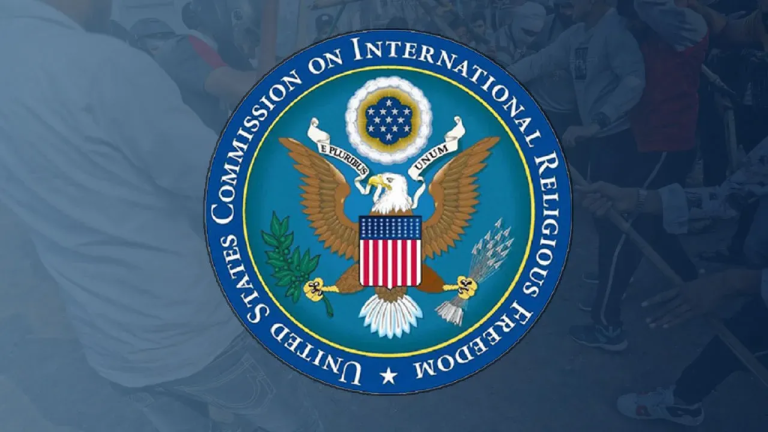
- 30 Mar 2025
In News:
In its 2025 Annual Report, the United States Commission on International Religious Freedom (USCIRF) recommended designating India as a "Country of Particular Concern" (CPC), citing alleged systemic violations of religious freedom.
Key USCIRF Recommendations:
- Label India as a CPC under the International Religious Freedom Act (IRFA), 1998.
- Impose targeted sanctions on Indian institutions, including the Research and Analysis Wing (RAW), and individuals such as Vikash Yadav.
- Review bilateral defence agreements, including drone deals.
- Prioritise religious freedom in diplomatic dialogues with India.
- Reintroduce the Transnational Repression Reporting Act, 2024 to monitor global religious freedom violations.
About USCIRF:
- Established by: U.S. Congress (1998) under IRFA.
- Nature: Independent, bipartisan federal agency.
- Not affiliated with: U.S. State Department (but works in coordination).
- Structure: 9 Commissioners appointed by the U.S. President and Congressional leaders.
- Mandate: Monitor global religious freedom (FoRB), advise U.S. leadership, recommend sanctions, and publish annual reports.
Core Functions:
- Track global trends in freedom of religion or belief.
- Recommend policy actions including CPC designation.
- Advocate for religious prisoners of conscience.
- Maintain a FoRB Victims List and issue thematic reports.
India’s Official Response:
The Ministry of External Affairs (MEA) firmly rejected USCIRF’s report, calling it “biased and politically motivated.”
- MEA Spokesperson Randhir Jaiswal criticized the report for misrepresenting isolated incidents and ignoring India’s multicultural and pluralistic society.
- Highlighted India’s 1.4 billion diverse population, representing all major religions.
- Emphasized that USCIRF’s assessments reflect a deliberate narrative rather than genuine concern for religious rights.
- Asserted that such reports would not affect India’s image as a democratic and tolerant nation.
- Called for USCIRF itself to be recognized as an “entity of concern.”
Baalpan ki Kavita Initiative

- 30 Mar 2025
In News:
To fulfil the vision of NEP 2020, the Department of School Education & Literacy (DoSE&L), Ministry of Education has launched “Baalpan ki Kavita initiative: Restoring Bhartiya rhymes/poems for young children” for preparing a compendium of nursery rhymes/poems in all Bhartiya Bhasha and also in English, focusing on content relevant to the Indian context.
Key Highlights:
Objective:To compile a national-level compendium of nursery rhymes and poems in all Bhartiya Bhashas (Indian languages) and English, with a focus on culturally relevant content for early childhood learning.
Key Features:
- Encourages multilingual and mother-tongue based education, in line with National Education Policy (NEP) 2020.
- Aims to make foundational learning joyful, relatable, and rooted in Indian ethos.
- Invites existing folklore rhymes and newly composed poems across three age-based categories:
- Pre-primary: Ages 3–6
- Grade 1: Ages 6–7
- Grade 2: Ages 7–8
- Open to submissions in all Indian languages and English.
Significance:
- Reinforces foundational literacy through culturally contextual content.
- Promotes regional literature, creativity, and early multilingualism.
- Strengthens identity and connection to Indian culture from an early age.
Baalpan ki Kavita Initiative

- 30 Mar 2025
In News:
To fulfil the vision of NEP 2020, the Department of School Education & Literacy (DoSE&L), Ministry of Education has launched “Baalpan ki Kavita initiative: Restoring Bhartiya rhymes/poems for young children” for preparing a compendium of nursery rhymes/poems in all Bhartiya Bhasha and also in English, focusing on content relevant to the Indian context.
Key Highlights:
Objective:To compile a national-level compendium of nursery rhymes and poems in all Bhartiya Bhashas (Indian languages) and English, with a focus on culturally relevant content for early childhood learning.
Key Features:
- Encourages multilingual and mother-tongue based education, in line with National Education Policy (NEP) 2020.
- Aims to make foundational learning joyful, relatable, and rooted in Indian ethos.
- Invites existing folklore rhymes and newly composed poems across three age-based categories:
- Pre-primary: Ages 3–6
- Grade 1: Ages 6–7
- Grade 2: Ages 7–8
- Open to submissions in all Indian languages and English.
Significance:
- Reinforces foundational literacy through culturally contextual content.
- Promotes regional literature, creativity, and early multilingualism.
- Strengthens identity and connection to Indian culture from an early age.
Delhi Joins National e-Vidhan Application (NeVA)
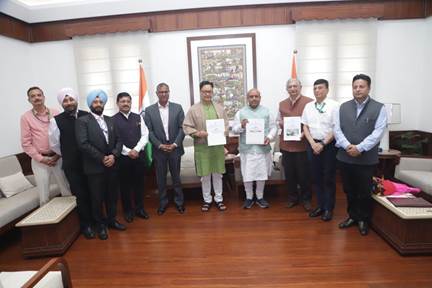
- 29 Mar 2025
In News:
The Delhi Legislative Assembly has become the 28th legislature in India to sign a tripartite Memorandum of Understanding (MoU) with the Ministry of Parliamentary Affairs (MoPA) and the Government of NCT of Delhi for implementing the National e-Vidhan Application (NeVA). This move marks a significant advancement in India's push for paperless, transparent, and efficient legislative processes.
About NeVA:
- Developed by: Ministry of Parliamentary Affairs
- Hosted on:Meghraj 2.0, India’s national cloud infrastructure
- Objective: To digitize legislative operations across State Legislatures and Union Territory Assemblies
- Vision: Aligned with the “One Nation, One Application” initiative
Key Features:
Feature Description
Device-Neutral Accessible via smartphones, tablets, laptops, and desktops
Real-Time Access Legislators can view agendas, bills, questions, committee reports, and proceedings anytime
Digital Repository Secure storage for legislative documents with confidentiality and integrity
Multilingual Support Facilitates linguistic inclusivity across India
Member-Centric Tools Access to member directories, notices, starred/unstarred Q&A, digital bulletins, and
house business
Public Interface Allows citizens and media to access legislative documents and updates
Smart Legislative Tools Aids Speakers/Chairs in conducting proceedings smoothly
Stakeholders Benefiting from NeVA:
- Members of Legislative Assemblies and Councils
- Government Ministers and Department Staff
- Assembly Secretariat Officials
- Media and General Public
Delhi’s Onboarding Highlights:
- Signed By: Ministry of Parliamentary Affairs, Delhi Legislative Assembly, and GNCTD
- Purpose: To empower Delhi MLAs with digital tools and reduce paper-based procedures
- Significance: Part of Delhi’s 100-day governance agenda aimed at modernization and transparency
Gold Monetisation Scheme (GMS)
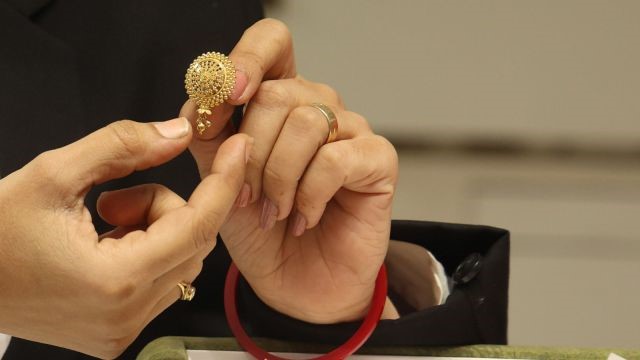
- 28 Mar 2025
In News:
The Government of India discontinued the Medium-Term and Long-Term Government Deposits (MLTGD) under the Gold Monetisation Scheme (GMS) with effect from March 26, 2025. Earlier, the Sovereign Gold Bond (SGB) scheme was also discontinued.
What is the Gold Monetisation Scheme (GMS)?
- Launched: 15th September 2015 (improved version of earlier Gold Deposit Scheme and Gold Metal Loan Scheme).
- Objective:
- Mobilize idle gold held by households and institutions.
- Bring privately held gold into the formal economy.
- Reduce the country's dependence on gold imports.
- Help lower the Current Account Deficit (CAD).
- Eligibility: Individuals, institutions, and government entities could deposit their idle gold in banks.
- Redemption:
- Gold is not returned in the same form (e.g., jewellery).
- Maturity proceeds are redeemed in the form of cash, gold bars, or coins (depending on the type of deposit).
Types of Deposits under GMS (Before Discontinuation of MLTGD):
- Short-Term Bank Deposit (STBD):
- Tenure: 1–3 years
- Interest Rate: Variable; decided by banks
- Redemption: Gold or cash
- Use: Lending by banks for domestic needs
- Medium-Term Government Deposit (MTGD):
- Tenure: 5–7 years
- Interest Rate: 2.25%; decided by Govt. in consultation with RBI
- Redemption: Cash only
- Use: Government and RBI reserves
- Long-Term Government Deposit (LTGD):
- Tenure: 12–15 years
- Interest Rate: 2.5%; decided by Govt. in consultation with RBI
- Redemption: Cash only
- Use: Monetary policy operations and reserves
Note: As of 2025, only the Short-Term Bank Deposit remains operational.
Sovereign Gold Bond (SGB) Scheme – Overview:
- Launched: 2015
- Objective:
- Reduce demand for physical gold.
- Promote investment in financial gold instruments.
- Channel household savings into productive financial assets.
- Key Features:
- Issued in denominations of 5g, 10g, 50g, and 100g.
- Tenure: 8 years (with exit option after 5 years).
- Interest Rate: 2.5% per annum (paid semi-annually).
- Capital gains tax exemption on maturity.
- Backed by the Government of India.
- Status: Discontinued as of 2025, alongside MLTGD and LTGD under GMS.
Other Gold-Related Initiative:
- Indian Gold Coin Scheme (2015):
- First-ever national gold coin with the Ashoka Chakra emblem.
- Launched alongside GMS and SGB to promote domestically branded gold and reduce reliance on imported gold bars/coins.
Rushikonda Beach Regains prestigious Blue Flag Certification
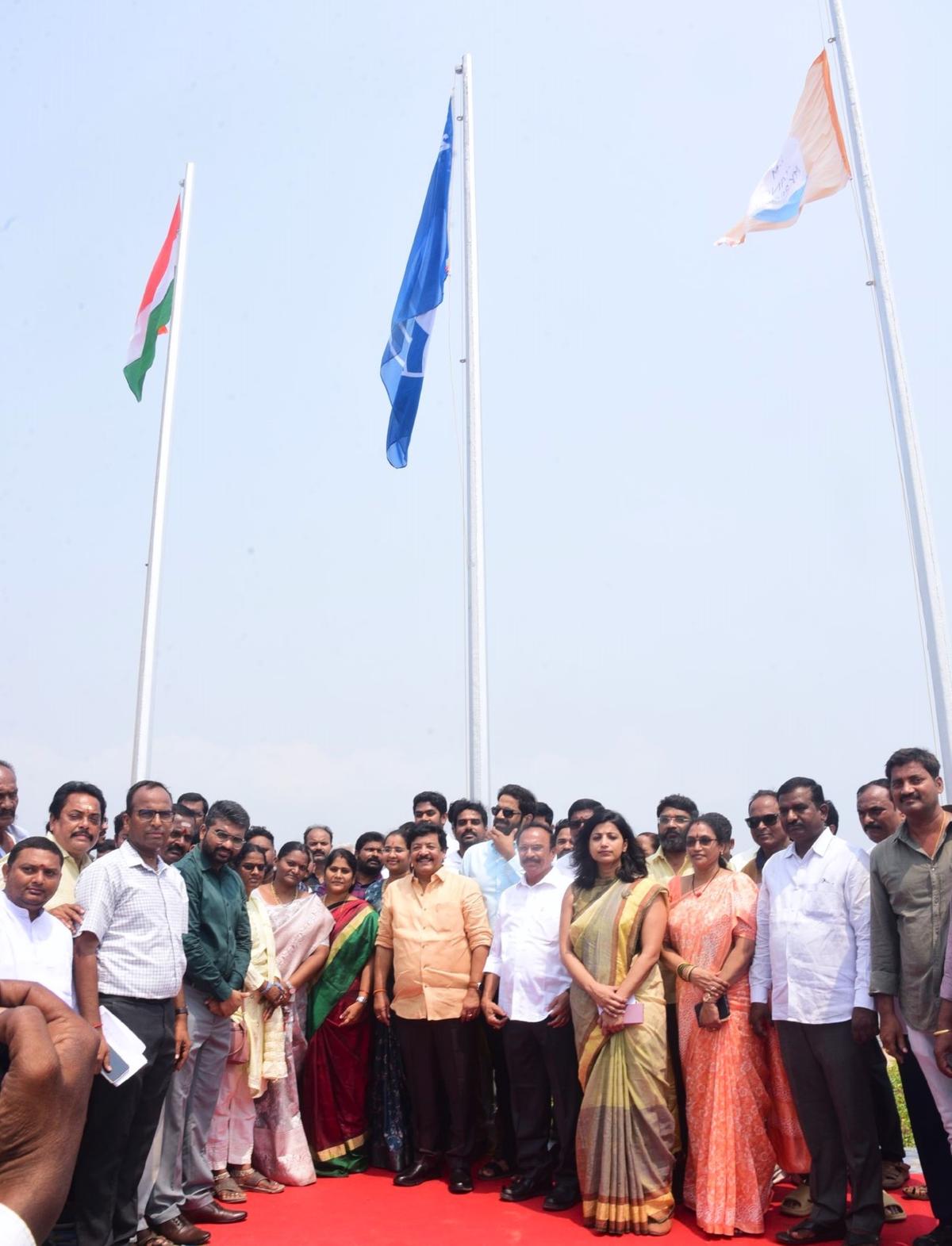
- 27 Mar 2025
In News:
Rushikonda Beach, located in Visakhapatnam, Andhra Pradesh, has successfully regained its Blue Flag certification after a temporary withdrawal due to non-compliance issues. It remains the only Blue Flag-certified beach in Andhra Pradesh and one of 13 such beaches in India.
What is the Blue Flag Certification?
- Administered by: Foundation for Environmental Education (FEE), Denmark.
- National Operator in India: Blue Flag India under the Society of Integrated Coastal Management (SICOM).
- Purpose: Recognizes beaches meeting strict standards of environmental management, safety, cleanliness, and facilities.
- Criteria: Beaches must comply with 33 environmental and safety criteria, including water quality, waste management, safety measures, and environmental education.
- Control Visits: National Operator conducts scheduled and surprise inspections.
Reasons for Temporary Withdrawal
- The Blue Flag tag was withdrawn after complaints of poor maintenance and non-compliance with amenities.
- Non-compliance types:
- Minor issues require rectification within 10 days.
- Multiple or major issues can lead to temporary or season-long withdrawal.
- Rushikonda Beach lost the tag for about two weeks before corrective measures were implemented.
Measures Taken for Regaining the Blue Flag
- Repair and upgrade of beach amenities.
- Plans to install bamboo fencing around the premises to protect the area.
- Public appeals to avoid littering and misuse.
- Education drives for local fisherfolk on beach cleanliness.
- Plans to promote tourism with new beach shacks and regulated alcohol sales, awaiting government approval.
- Identification of 10 other beaches in Andhra Pradesh for upgradation and Blue Flag certification.
Importance of the Blue Flag Tag for Rushikonda Beach
- Tourism Impact: The Blue Flag is internationally recognized by tourists as a mark of safety, cleanliness, and eco-friendliness.
- Environmental Awareness: Promotes responsible tourism and protects coastal ecosystems.
- Local Economy: Supports livelihoods of petty vendors and fisherfolk by attracting visitors.
Key Facts About Rushikonda Beach
- Location: Visakhapatnam, Andhra Pradesh.
- Awarded Blue Flag: First awarded in 2020.
- Features: Golden sands, clear waters, and well-maintained recreational amenities.
- Significance: The only Blue Flag beach in Andhra Pradesh and among 13 in India.
Abolition of Equalisation Levy on Online Advertisements
- 26 Mar 2025
In News:
The Indian government has proposed to abolish the Equalisation Levy (digital tax) on online advertisements, effective April 1, 2025. This move is set to benefit digital advertisers on platforms like Google, Meta (formerly Facebook), and X (formerly Twitter), reducing their tax burden.
Overview of Equalisation Levy
- Introduction:
- The Equalisation Levy was introduced by the Finance Act of 2016. Its primary objective was to tax foreign digital service providers (such as Google, Meta, etc.) for income generated from digital transactions in India, ensuring these businesses contribute fairly to India’s tax system, despite having no physical presence.
- Coverage:
- Initially, the levy applied to online advertising services, imposing a 6% tax on payments made to non-resident providers. This was later expanded in 2020 to include e-commerce transactions, imposing a 2% levy on revenues from e-commerce operations. The e-commerce levy was abolished in August 2024.
- Conditions: The levy is applicable if:
- The payment is made to a non-resident service provider.
- The annual payment to the service provider exceeds Rs. 1 lakh in a financial year.
- Exclusions:
- If the non-resident service provider has a permanent office in India or if the income qualifies as royalties or technical services fees, it is not subject to the levy.
- Transactions under Rs. 1 lakh or involving exempt income under Section 10(50) are not taxed under the Equalisation Levy.
Key Reasons for Abolishing the Equalisation Levy
- Improved Tax Relations with the US: The levy has been a point of contention, particularly with the US, which threatened retaliatory tariffs. The move to abolish the 6% levy is seen as a step to improve trade relations and avoid escalation of trade disputes.
- Simplification of Tax Laws: Experts believe that removing the levy aligns with India’s broader efforts to simplify and streamline its tax legislation, making it easier for digital service providers to operate within the country.
- Addressing Global Concerns: The proposal to remove the levy is also in response to concerns raised by partner nations, like the US, about the unilateral nature of the tax. This step aims to reduce friction and maintain smoother diplomatic and trade ties.
Implications of the Abolition of the Equalisation Levy
- Reduced Costs for Advertisers: The removal of the 6% tax will lower the financial burden on advertisers in India who use platforms like Google, Meta, and X. This is expected to encourage more investment in digital advertising and benefit the broader digital economy.
- Enhanced Competitiveness: By removing the levy, India aims to create a more level playing field for both domestic and foreign companies involved in digital advertising, fostering fairer competition.
- Impact on International Relations: The decision could help defuse trade tensions, particularly with the US, and might avoid reciprocal tariffs that could affect Indian companies operating internationally.
- Tax Revenue Implications: While the abolition may result in short-term revenue loss from the digital services sector, it is anticipated that the long-term benefits from increased digital advertising spending and improved international relations will outweigh the initial loss.
Future Outlook
- Monitoring and Adjustments: While the government has moved to abolish the Equalisation Levy, experts suggest that further monitoring and analysis of digital taxation might be required, especially considering global trends and the evolving digital economy. The impact of this abolition on India’s digital tax landscape will need to be observed closely.
- Diplomatic Measures: Along with the abolition of the levy, the government continues to pursue diplomatic efforts to ensure fair trade practices and avoid potential retaliatory measures by foreign nations.
Permafrost Degradation in the Kashmir Himalayas
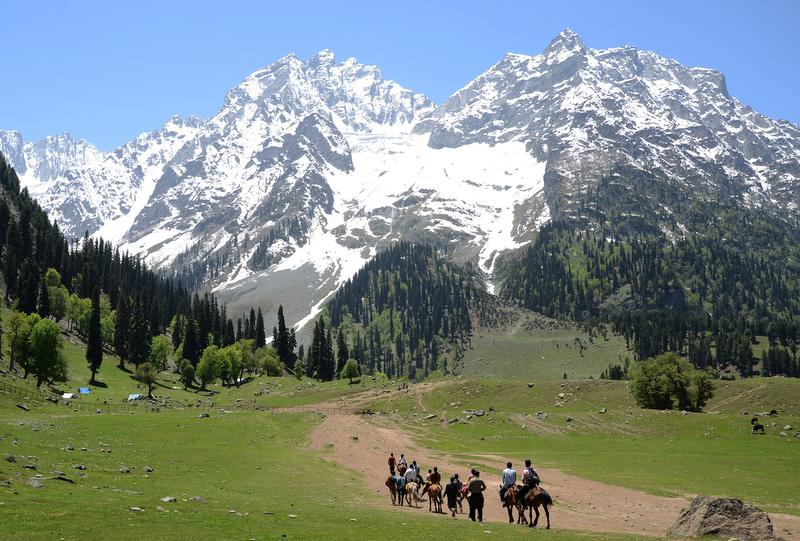
- 26 Mar 2025
In News:
Permafrost, the ground that remains frozen for at least two years, has long been a critical feature in high-altitude regions like the Kashmir Himalayas. Recent studies have highlighted that melting permafrost is emerging as a significant environmental threat, with the potential to disrupt both ecological systems and infrastructure in the region.
Key Findings of Recent Studies
- Extent of Permafrost: Permafrost covers 64.8% of Jammu & Kashmir (J&K) and Ladakh, with 26.7% being continuous, 23.8% discontinuous, and 14.3% sporadic.
- Regional Distribution: Ladakh has the highest concentration of permafrost (87%), while areas like the Shigar Valley and Siwaliks have no permafrost.
- Impact on Infrastructure: Permafrost degradation threatens key infrastructure, including roads, settlements, and hydropower projects. Approximately 193 km of roads, 2,415 households, and eight hydropower projects are at risk due to thawing permafrost.
- Glacial Lake Outburst Floods (GLOFs): Permafrost thaw increases the likelihood of GLOFs, as seen in recent events like the 2021 Chamoli disaster and the 2023 South Lhonak GLOF. These floods, triggered by the instability of glacial lakes formed by melting ice, can cause significant destruction.
Environmental Impacts of Permafrost Thawing
- Carbon Release: As permafrost melts, it releases stored organic carbon, including methane, a potent greenhouse gas that exacerbates climate change.
- Hydrological Changes: Thawing permafrost can alter river flow and groundwater availability, impacting water resources for local communities and ecosystems.
- Geological Instability: The breakdown of permafrost leads to landslides and slope instability, posing risks to both natural landscapes and human settlements.
Factors Contributing to Permafrost Degradation
- Global Warming: Rising surface temperatures are the primary driver of permafrost thaw.
- Human Activities: Construction activities, including road-building, dam construction, and real estate development, disturb the stability of permafrost. Additionally, deforestation and land-use changes increase the exposure of permafrost to solar radiation, accelerating its degradation.
- Natural Events: Earthquakes and natural processes, like rock-ice avalanches, also contribute to the destabilization of permafrost.
Risks to Local Communities and Infrastructure
- Vulnerable Regions: Thousands of households and critical infrastructure in permafrost-rich areas, such as Ladakh, are at risk due to permafrost thawing. Military and strategic infrastructure, including roads vital for connectivity, may face serious disruptions, compromising national security.
- Glacial Lake Outburst Floods (GLOFs): The melting of glaciers can lead to the formation of proglacial lakes, increasing the risk of GLOFs. In J&K, 332 such lakes have been identified, with 65 showing significant flood risks. GLOFs are a major threat to downstream communities and infrastructure.
Way Forward: Mitigating Risks
- Integrated Planning: Future infrastructure development, especially roads and hydropower projects, should incorporate data on permafrost zones. Risk-sensitive land-use planning and construction methods must be adopted to minimize environmental damage.
- Enhanced Monitoring: Remote sensing technologies, including satellite-based monitoring and ground-based LiDAR systems, should be employed to track permafrost degradation and associated environmental changes more effectively.
- Comprehensive Environmental Assessments: Environmental Impact Assessments (EIAs) must be strengthened to include the risks of permafrost thawing, particularly in relation to GLOFs, landslides, and groundwater depletion. This is crucial for ensuring that development projects in these regions do not exacerbate the environmental risks posed by permafrost degradation.
Targeted Species Conservation
- 26 Mar 2025
In News:
A major global study published in PLOS Biology (March 2025) has reaffirmed that targeted species-specific conservation measures are critical in reversing biodiversity loss and preventing extinctions. Despite the ongoing biodiversity crisis, where six times more species are declining than improving, the study found that where conservation efforts were applied, results were overwhelmingly positive.
Analyzing over 67,000 animal species from the IUCN Red List, researchers from institutions including the University of Cambridge, IUCN, and BirdLife International discovered that 99.3% of species that improved in threat status since 1980 had benefitted from conservation interventions, such as habitat protection, reintroduction, breeding programmes, and legal protections. Of the 969 species with globally increasing populations, 78.3% were under active conservation.
Notable global success stories include:
- Iberian Lynx: Rebounded from a few hundred to several thousand through breeding and habitat restoration.
- K?k?p? (New Zealand parrot): Revived via intensive monitoring and predator control.
- European Bison: Successfully reintroduced in Eastern Europe after extinction in the wild.
- Marine species such as humpback and blue whales also recovered after international moratoriums on whaling.
Island ecosystems like New Zealand, Mauritius, and the Seychelles showed the highest concentration of species recovery, while decline hotspots included the Tropical Andes, Sumatra, Malaysia, and Borneo.
Despite these successes, the study cautions that since 1980, 1,220 species of birds, mammals, and amphibians have deteriorated in Red List status compared to only 201 species that improved.
Causes include habitat loss, pollution, overexploitation, climate change, invasive species, and disease.The study called for landscape-scale conservation and ambitious implementation of Goal A of the Kunming-Montreal Global Biodiversity Framework to halt extinction risk and restore resilient populations.
India’s Species-Specific Conservation Efforts
India has adopted a multi-pronged species-specific conservation approach, primarily under the Integrated Development of Wildlife Habitats (IDWH), 2008, which continues under the 15th Finance Commission (2021–26). The scheme focuses on critically endangered species through captive breeding, habitat restoration, and community participation.
Key initiatives include:
- Species Recovery Programme: Prioritizes 22 species (16 terrestrial and 6 aquatic) for focused conservation.
- Project Tiger (1973) and Project Elephant (1992): Flagship conservation efforts for apex species.
- Project Crocodile: Initiated post-Wildlife (Protection) Act, 1972, supported by the UN. Saltwater crocodiles in Bhitarkanika increased from 95 (1975) to 1,811.
- Sea Turtle Conservation Project (1999): Focuses on Olive Ridley Turtles, listed as Vulnerable (IUCN), Schedule I (WLPA), and Appendix I (CITES).
- Vulture Action Plan 2020–25: Aims to eliminate diclofenac use and protect food sources for vultures. India's first Vulture Conservation and Breeding Centre (VCBC) was set up in Pinjore, Haryana.
- Indian Rhino Vision 2020: Increased the Greater One-Horned Rhinoceros population in Kaziranga National Park to over 2,600 (2022).
- Project Cheetah (2022): Reintroduces cheetahs extinct in India since 1952, with cheetahs from Namibia and South Africa released in Kuno National Park. India saw its first wild cheetah birth in 2023 after 75 years.
- Maharashtra’s Pangolin Action Plan: The first dedicated plan for pangolin conservation. Pangolins are listed under Schedule I of the WLPA, receiving the highest level of protection.
Indian Ocean Ship (IOS) Sagar & AIKEYME
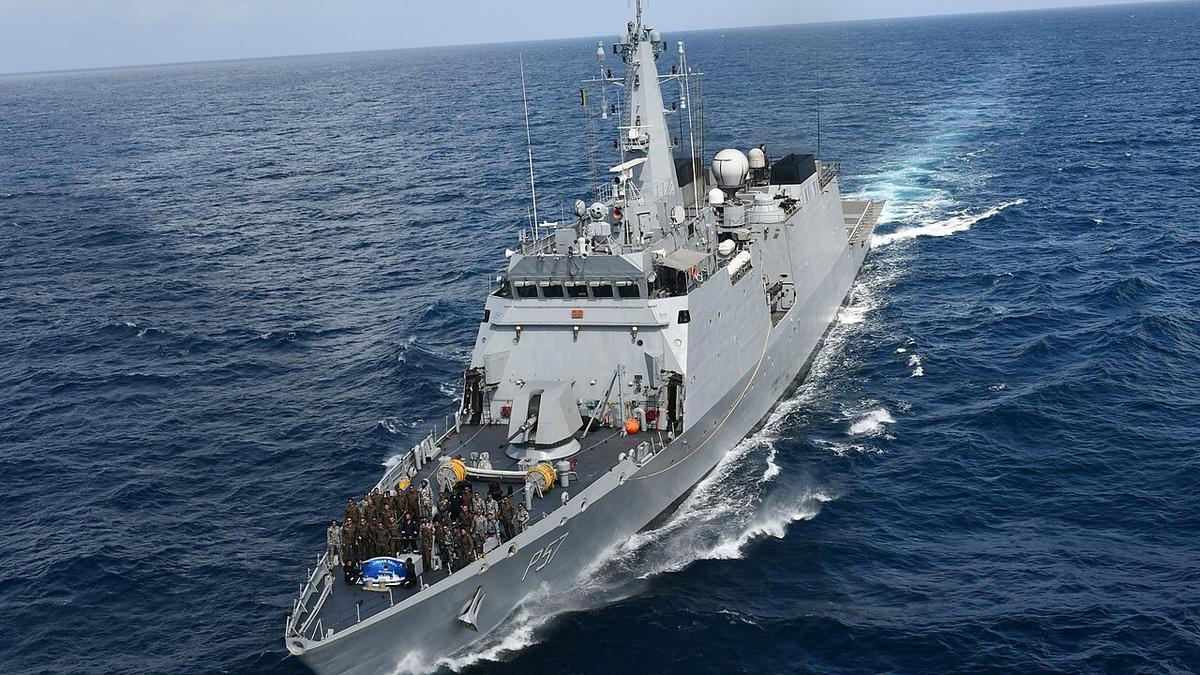
- 26 Mar 2025
In News:
India’s Maiden India-Africa Naval Exercise: Indian Ocean Ship (IOS) Sagar & AIKEYME.
Indian Ocean Ship (IOS) Sagar
- Launched: April 5 – May 8, 2025
- Vessel: INS Sunayna (Offshore Patrol Vessel)
- Objective: Maritime security cooperation in the Southwest Indian Ocean Region (IOR)
- Participants:India + 9 African & IOR nations:Comoros, Kenya, Madagascar, Maldives, Mauritius, Mozambique, Seychelles, Sri Lanka, and South Africa
- Activities:
- Port Visits: Dar-es-Salaam (Tanzania), Nacala (Mozambique), Port Louis (Mauritius), Port Victoria (Seychelles), Male (Maldives)
- Joint EEZ Surveillance: With Tanzania, Mozambique, Mauritius, and Seychelles
- Training: Personnel from participating countries trained at Indian naval institutions in Kochi on operations, navigation, and maritime security
AIKEYME (Africa-India Key Maritime Engagement)
- Meaning: "Unity" (from Sanskrit)
- Type: First Multilateral Naval Exercise between India and African nations
- Duration: Six days in mid-April 2025
- Co-hosts: Indian Navy and Tanzania People's Defence Force (TPDF)
- Inauguration: By Indian Defence Minister at Dar-es-Salaam, Tanzania
- Participants:India + 10 African nations:Comoros, Djibouti, Eritrea, Kenya, Madagascar, Mauritius, Mozambique, Seychelles, South Africa, Tanzania
- Exercise Phases:
- Harbour Phase:
- Table-top exercises
- Command post exercises on piracy and information sharing
- Training in Seamanship and Visit, Board, Search & Seizure (VBSS)
- Sea Phase:
- Maritime security drills
- Search and Rescue (SAR)
- Small arms firing
- Helicopter operations
- Harbour Phase:
Strategic Context & Broader Framework
SAGAR (Security and Growth for All in the Region) – 2015
- Aim: Promote a free, open, inclusive and secure Indo-Pacific
- Key Pillars:
- Countering China's influence in the region
- Enhancing maritime security (anti-piracy, anti-terrorism)
- Capacity building in disaster management and infrastructure
- Promoting regional economic and connectivity projects
MAHASAGAR Initiative
- Announced by PM Modi in Mauritius
- Stands for Advancement for Security Across the Regions
- Focuses on bolstering maritime security partnerships across the Indian Ocean
Key Supporting Indian Initiatives
- Mission SAGAR: Delivered COVID-19 aid to Indian Ocean nations
- Vaccine Maitri: Supplied vaccines to neighbours like Maldives and Bhutan
- South Asia Satellite: Enhanced communication & disaster response
- Kaladan Multi-Modal Transit Project: Boosted India-Myanmar-Southeast Asia connectivity
World Water Day 2025
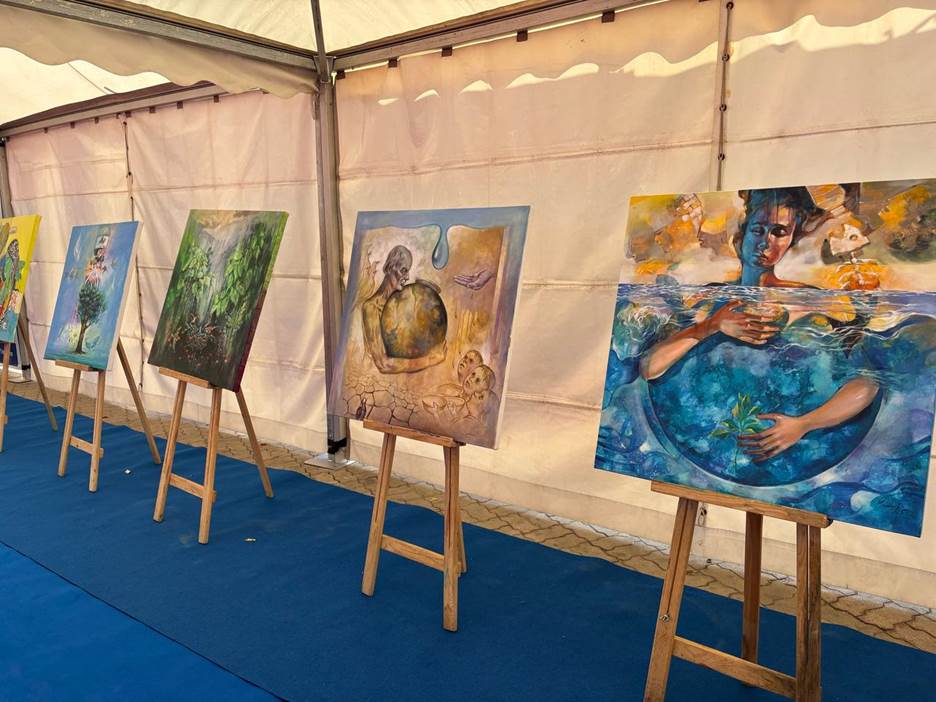
- 25 Mar 2025
In News:
Marking World Water Day, the Ministry of Jal Shakti, in collaboration with the Ministry of Environment, Forest & Climate Change and the Government of Haryana, launched the much-anticipated sixth edition of Jal Shakti Abhiyan: Catch the Rain - 2025 in Panchkula, Haryana.
World Water Day 2025
- Observed On: 22nd March 2025
- 2025 Theme: ‘Glacier Preservation’
- Global Context: Declared by the United Nations General Assembly in 1993, conceptualized at the 1992 Rio Earth Summit.
- Linked SDG: Sustainable Development Goal 6 (SDG-6) – Clean Water and Sanitation for All by 2030.
- Purpose: To raise global awareness on water conservation and promote sustainable water use.
India's Observance: Launch of Jal Shakti Abhiyan – Catch the Rain 2025
- Launched by: Ministry of Jal Shakti, in collaboration with Ministry of Environment, Forest and Climate Change (MoEFCC) and Government of Haryana.
- Launch Venue: Panchkula, Haryana (first time outside Delhi).
- Theme: “????????????????: ??????????????” (People’s Action for Water Conservation – Towards Intensified Community Connect).
- Focus Areas:
- Rainwater harvesting
- Groundwater recharge
- Community-led water conservation
- Ecological restoration (forests, rivers, springs)
Key Campaigns & Initiatives
Jal Shakti Abhiyan: Catch the Rain 2025 (JSA:CTR)
- Targeted Districts: 148 water-stressed districts across India.
- Tagline: “Catch the Rain where it falls, when it falls.”
- Objective: Promote localized water conservation through people’s participation and decentralized planning.
“Jal-Jangal-Jan” Abhiyan
- Aim: Restore ecological connectivity between water, forests, and communities.
- Collaborators: MoEFCC and Jal Shakti Ministry.
- Tools Used: Awareness videos, AV content, best practice compilations.
State-Level Innovations: Haryana Model
- Launched:
- Mukhyamantri Jal Sanchay Yojana – Enhancing water harvesting through community participation.
- Water Resources Atlas – Scientific mapping of water availability.
- Online Canal Water Management System – Real-time irrigation data for efficiency.
- E-booklet on Integrated Water Resources Management.
- Infrastructure Projects under SBM-G & JSA:
- Community Sanitary Complexes
- Solid & Liquid Waste Management
- Gobardhan (Biogas) Projects
- Borewell Recharge Systems
- Micro-irrigation and Rainwater Harvesting Projects
Key Government Schemes Related to Water
- Jal Shakti Abhiyan (JSA) – Time-bound, mission-mode campaign for water conservation.
- Atal Bhujal Yojana – Participatory groundwater management in critical areas.
- AMRUT 2.0 – Urban water supply and sewerage services improvement.
India and the Indian Ocean Rim Association (IORA)
- 25 Mar 2025
In News:
Charting a route for IORA under India’s chairship
What is IORA?
The Indian Ocean Rim Association (IORA) is a regional inter-governmental organization established on 7 March 1997 to promote economic cooperation, regional integration, and sustainable development among countries bordering the Indian Ocean. The idea was initiated during Nelson Mandela’s visit to India in 1995, leading to the Indian Ocean Rim Initiative (IORI).
- Membership: 23 Member States and 10 Dialogue Partners
- Geographical Reach: Connects Asia, Africa, and Oceania via the Indian Ocean
- Secretariat: Based in Mauritius
Importance of the Indian Ocean Region (IOR)
- Geopolitical Relevance: Subset of the Indo-Pacific but with unique characteristics
- Demographics: Home to two-thirds of the global population
- Economic Significance:
- Handles 75% of global trade volume
- Accounts for 50% of global daily oil consumption
- Generates USD 1 trillion worth of goods/services annually
- Intra-IORA trade: USD 800 billion (2023)
India’s Chairship of IORA (2025–27)
India is set to take over as Chair of IORA in November 2025 (currently Vice-Chair). It aims to enhance the organization’s governance and effectiveness by focusing on:
- Strengthening IORA’s Budget:
- Promote public-private partnerships
- Encourage investments from key maritime industries (shipping, oil & gas, marine tourism)
- Learn from other models like the Indian Ocean Commission ($1.3 billion budget for 2020–25)
- Technology Integration:
- Adopt digital tools for data governance
- Enable faster policy analysis and decision-making
- Reduce inefficiencies in record-keeping
- Maritime Education and Capacity Building:
- Collaborate with academic and research institutions
- Launch maritime-ready and interdisciplinary courses (e.g., marine accounting)
- Develop a skilled workforce to support the blue economy
Strategic Synergy with India’s SAGAR Vision
India’s Security and Growth for All in the Region (SAGAR) vision aligns with IORA’s objectives:
- Enhancing maritime safety and security
- Fostering economic growth and sustainable development
- Promoting regional peace and cooperation
India is expected to leverage its diplomatic ties with member states and encourage collaborative problem-solving across the region.
RBI’s 6th Remittance Survey (2023–24)
- 24 Mar 2025
In News:
India remains the world’s top recipient of remittances, with total inward remittances doubling from USD 55.6 billion in 2010–11 to USD 118.7 billion in 2023–24, as per the Reserve Bank of India’s Sixth Round of the Remittances Survey.
Shift in Sources of Remittances
- A significant trend in 2023–24 is the growing dominance of Advanced Economies (AEs) over traditional Gulf sources.
- The United States emerged as the largest contributor with a 27.7% share, followed by the United Arab Emirates (UAE) at 19.2%.
- AEs including the UK, Singapore, Canada, and Australia now account for over 50% of India’s total remittance inflows.
- The UK’s share increased notably from 3.4% (2016–17) to 10.8% (2023–24).
- Australia contributed 2.3%, reflecting rising skilled migration.
- The Gulf Cooperation Council (GCC) countries (UAE, Saudi Arabia, Kuwait, Qatar, Oman, Bahrain) collectively contributed 38%, a decline from 47% in 2016–17.
Reasons for the Shift
- Robust Job Markets in AEs: High-paying jobs for skilled Indian migrants in the US, UK, Canada, and Australia.
- UK-India Migration and Mobility Partnership (MMP) tripled Indian migration to the UK from 76,000 in 2020 to 250,000 in 2023.
- Favorable immigration policies in Canada (Express Entry) and Australia boosted skilled migration.
- Declining Opportunities in GCC:
- Post-pandemic return of Indian migrants and reduced demand for low-skilled labor due to automation and economic diversification.
- Nationalization policies (e.g., Nitaqat in Saudi Arabia, Emiratization in UAE) favor local employment.
- Changing Migration Patterns:
- Southern states (Kerala, Tamil Nadu, Andhra Pradesh, Telangana) now prefer AEs due to higher education levels.
- Northern states (Uttar Pradesh, Bihar, Rajasthan) still send migrants to GCC, but limited by lower skill levels.
- Rise in Education-Driven Migration:
- Many Indian students pursue higher education abroad and stay back for employment.
- Indian students abroad: Canada (32%), US (25.3%), UK (13.9%), Australia (9.2%).
State-Wise Remittance Distribution (2023–24)
- Maharashtra: 20.5%
- Kerala: 19.7%
- Tamil Nadu: 10.4%
- Telangana: 8.1%
- Karnataka: 7.7%
- Notable increases observed in Punjab and Haryana.
Mode of Transfers
- The Rupee Drawing Arrangement (RDA) remains the dominant channel.
- Other channels include direct Vostro transfers and fintech platforms.
- Digital transactions account for 73.5% of remittance flows.
Shaheed Diwas
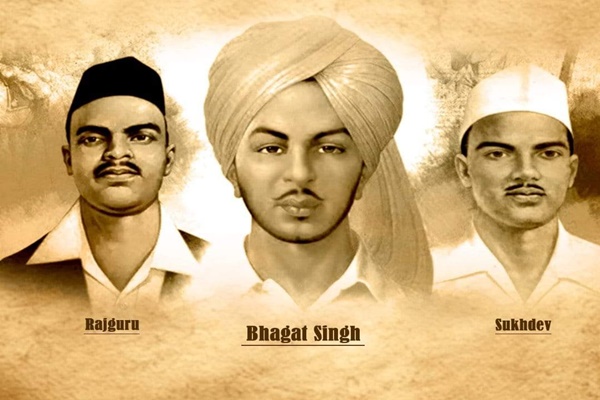
- 24 Mar 2025
In News:
On Shaheed Diwas (23rd March), the nation commemorates the supreme sacrifice of three iconic freedom fighters—Bhagat Singh, Shivaram Rajguru, and Sukhdev Thapar. Prime Minister Narendra Modi paid tribute to these martyrs, remembering their unwavering resolve and courageous efforts in the struggle for India's independence. This day marks the execution of these three revolutionaries by British colonial authorities in Lahore Jail in 1931.
Background of the Martyrs
The trio was convicted for their involvement in the 1928 Lahore Conspiracy Case, which revolved around the killing of J.P. Saunders, a British officer. The incident occurred after Saunders was mistakenly identified as Superintendent James Scott, who was blamed for the death of Lala Lajpat Rai during a protest against the Simon Commission. The execution of these freedom fighters on 23rd March 1931 became a symbol of their sacrifice for the cause of India’s freedom.
The three were members of the Hindustan Socialist Republican Association (HSRA), a revolutionary group that sought to overthrow British rule through armed struggle. Their fearless actions continue to inspire the nation to this day.
Brief Profiles of the Martyrs
- Bhagat Singh (1907–1931): Born in Punjab, Bhagat Singh was a prominent revolutionary who played a key role in the fight against British rule. He is remembered for his bold actions, such as the bombing of the Central Legislative Assembly in 1929, and his fearless stand against colonial oppression. His execution at the age of 23 became a catalyst for the freedom struggle.
- Shivaram Rajguru (1908–1931): Born in Maharashtra, Rajguru was a committed revolutionary who, along with Bhagat Singh, was involved in the assassination of J.P. Saunders. He was known for his dedication to the cause of armed resistance and his determination to fight colonial oppression. Rajguru was executed at the age of 23.
- Sukhdev Thapar (1907–1931): A key figure in mobilizing youth for the freedom struggle, Sukhdev was born in Punjab. He played a significant role in the activities of the HSRA and was instrumental in organizing protests and revolutionary activities. His execution, like that of his fellow revolutionaries, became a symbol of the ultimate sacrifice for India's freedom.
Financial Assistance for Promotion of Art and Culture
- 24 Mar 2025
In News:
The Ministry of Culture has implemented several schemes aimed at supporting the growth and preservation of India's rich art and cultural heritage. One of the key initiatives is the ‘Financial Assistance for Promotion of Art and Culture’ Scheme, a Central Sector Scheme that provides financial support to eligible cultural organizations across the country. Below is an overview of the scheme, its components, and eligibility criteria.
Eligibility Criteria for Organizations
To be eligible for assistance under this scheme, cultural organizations must meet the following criteria:
- Registered as a society, trust, or not-for-profit company for at least three years.
- Registered on the NGO Darpan Portal of NITI Aayog.
- Have a primary focus on cultural activities.
- Submit audited financial statements for the last three years.
- Have filed Income Tax returns during the last three years.
Sub-Components of the Scheme
The scheme consists of eight sub-components, each designed to support different aspects of art and culture across India.
- Financial Assistance to Cultural Organizations with National Presence
- Objective: To support large cultural organizations with a nationwide presence.
- Grant Amount: Up to Rs. 1 crore (may increase to Rs. 5 crore in exceptional cases).
- Cultural Function & Production Grant (CFPG)
- Objective: Provides financial aid for cultural events like seminars, conferences, research, workshops, festivals, exhibitions, and productions of dance, drama, and music.
- Grant Amount: Up to Rs. 5 lakh (may increase to Rs. 20 lakh in exceptional cases).
- Financial Assistance for the Preservation & Development of Cultural Heritage of the Himalayas
- Objective: To promote and preserve the cultural heritage of the Himalayan region, including Jammu & Kashmir, Himachal Pradesh, Uttarakhand, Sikkim, and Arunachal Pradesh.
- Grant Amount: Up to Rs. 10 lakh per year (may increase to Rs. 30 lakh in exceptional cases).
- Financial Assistance for the Preservation & Development of Buddhist/Tibetan Organizations
- Objective: To support Buddhist/Tibetan organizations, including monasteries, in preserving and developing Buddhist/Tibetan culture and traditions.
- Grant Amount: Up to Rs. 30 lakh per year (may increase to Rs. 1 crore in exceptional cases).
- Financial Assistance for Building Grants including Studio Theatres
- Objective: To provide financial support for creating cultural infrastructure, such as studio theatres, auditoriums, and rehearsal halls, along with providing essential facilities like lighting, acoustics, and sound systems.
- Grant Amount: Up to Rs. 50 lakh in metro cities and Rs. 25 lakh in non-metro cities.
- Financial Assistance for Allied Cultural Activities
- Objective: To assist in the creation of assets that enhance the audio-visual spectacle for live performances and cultural activities.
- Grant Amount:
- Audio: Up to Rs. 1 crore.
- Audio + Video: Up to Rs. 1.5 crore (includes 5 years of operation and maintenance costs).
- Intangible Cultural Heritage
- Objective: To safeguard and promote India’s intangible cultural heritage, supporting institutions, groups, and NGOs involved in relevant activities.
- Grant Amount: Varies based on specific activities.
- Domestic Festivals and Fairs
- Objective: To assist in organizing RashtriyaSanskritiMahotsavs (National Culture Festivals) across India, engaging artists and showcasing various cultural traditions.
- Grant Amount: Event-based assistance; Rs. 38.67 crore was released in the last three years for these events.
Implementation and Monitoring
The Ministry of Culture closely monitors the effective utilization of funds under this scheme through:
- Utilization Certificates and audited financial statements.
- On-site physical inspections to assess the progress and impact of the funded projects.
- Regular oversight ensures that the assistance is used for its intended purpose and meets the objectives of cultural promotion and preservation.
Support for Individual Artists and Cultural Research
In addition to the above schemes, the Ministry of Culture also supports individual artists and cultural researchers through the ‘Scheme of Scholarship and Fellowship for Promotion of Art and Culture’. This scheme includes the following components:
- Award of Scholarships to Young Artists (SYA)
- Objective: To support young artists aged 18-25 years in various cultural fields.
- Duration: 2 years.
- Eligibility: Applicants should have undergone at least 5 years of training under a recognized guru or institution.
- Award of Senior/Junior Fellowships
- Senior Fellowship: For individuals 40 years and above to support cultural research.
- Junior Fellowship: For individuals 25-40 years for cultural research.
- Up to 400 Fellowships are awarded annually.
- Tagore National Fellowship for Cultural Research
- Objective: To provide funding for cultural research under two categories: Tagore National Fellowship and Tagore Research Scholarship.
- Selection: Fellows and scholars are selected by the National Selection Committee.
- Project Grants for Research in Performing Arts
- Objective: To provide financial assistance to individuals conducting research in performing arts.
India-ASEAN and EU Cooperation on Counter-Terrorism
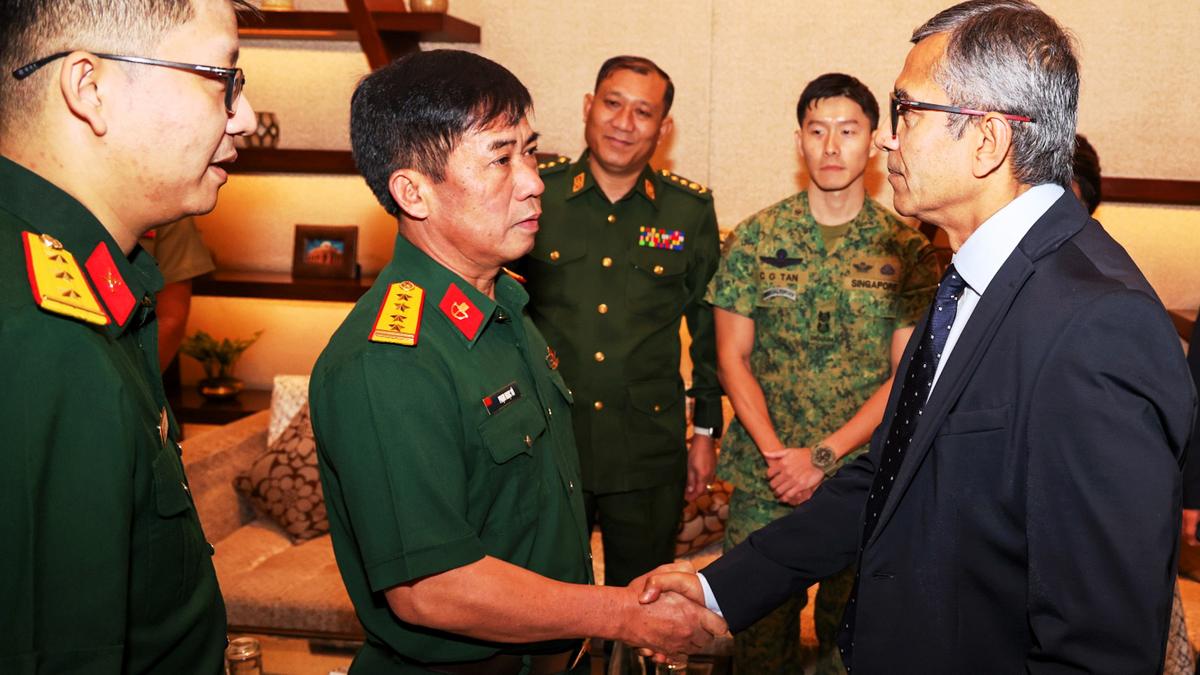
- 23 Mar 2025
In News:
- 14th ASEAN Defence Ministers’ Meeting-Plus (ADMM-Plus) Experts’ Working Group on Counter-Terrorism (EWG on CT) was held in New Delhi.
- India and Malaysia took over as co-chairs for the 2024–2027 cycle, succeeding Myanmar and Russia (2021–2024).
- Two major exercises were announced:
- Table-top Exercise in Malaysia – 2026
- Field Training Exercise in India – 2027
- These are part of the EWG on CT 2024–2027 Work Plan.
Purpose and Agenda:
- To devise a comprehensive and coordinated counter-terrorism strategy.
- To share on-ground experiences of ASEAN and partner nations’ defence forces.
- Focus on evolving threats like violent extremism, radicalisation, and terrorism financing.
Participants in ADMM-Plus EWG on CT:
- ASEAN Member States: Indonesia, Malaysia, Philippines, Singapore, Thailand, Brunei, Vietnam, Laos, Myanmar, Cambodia.
- Dialogue Partners: India, China, U.S., Russia, Japan, South Korea, Australia.
- ASEAN Secretariat also participated.
India-EU Counterterrorism Engagement:
- On the sidelines of the Raisina Dialogue, the European Union (EU) conducted a technical workshop in New Delhi on preventing and countering violent extremism.
- Organized with the Embassy of the Netherlands and attended by security experts from EU states like Belgium, Bulgaria, Germany, and the Netherlands, as well as the Strong Cities Network (SCN).
- Discussions focused on:
- De-radicalisation strategies
- Rehabilitation of extremists
- Whole-of-government approaches
- Risk evaluation and reintegration
- Reinforced the India-EU commitment made during the EU College of Commissioners' visit to India and in the Joint Leaders' Statement.
About ASEAN:
- Established: August 8, 1967 (Bangkok Declaration)
- Headquarters: Jakarta, Indonesia
- Motto: "One Vision, One Identity, One Community"
- Members (10):
- Founding (1967): Indonesia, Malaysia, Philippines, Singapore, Thailand
- Later: Brunei (1984), Vietnam (1995), Laos & Myanmar (1997), Cambodia (1999)
- Population: ~662 million (2022)
- Combined GDP: $3.2 trillion (2022)
ASEAN Institutional Mechanisms:
- ASEAN Summit – Annual heads-of-state meeting.
- ASEAN Coordinating Council (ACC) – Implements decisions and agreements.
- ASEAN Regional Forum (ARF) – India joined in 1996; focuses on regional security dialogue.
- ASEAN Secretariat – Administrative support to ASEAN initiatives.
India-ASEAN Relations:
- Sectoral Dialogue Partner since 1992; Full Dialogue Partner since 1996.
- India-ASEAN FTA:
- Goods (2009)
- Services & Investments (2014)
- Strategic Partnership: Established in 2012.
- India in ADMM-Plus: Actively participates in defence and security cooperation mechanisms.
- ASEAN Future Forum: Proposed by Vietnam (2023); India is a founding member.
Kerala Establish Senior Citizens Commission
- 23 Mar 2025
In News:
In a landmark move, Kerala has become the first state in India to pass legislation creating a Senior Citizens Commission, with the passing of the Kerala State Senior Citizens Commission Bill, 2025.
Background: Rising Elderly Population in Kerala
- Kerala is witnessing rapid population ageing, outpacing national trends.
- Elderly (60+) as % of total population:
- 1961: 5.1% (Kerala) vs. 5.6% (India)
- 2001: 10.5% (Kerala) vs. 7.5% (India)
- 2015: 13.1% (Kerala) vs. 8.3% (India)
- Current elderly population: Approximately 4.8 million, expected to rise to 8.4 million by 2036.
- Key issues: neglect, abuse, financial insecurity, and loneliness.
Senior Citizens Commission: Key Highlights
- Statutory body under the Kerala State Senior Citizens Commission Act, 2025.
- Objective: Protection, welfare, rehabilitation, and empowerment of senior citizens.
- Will act as an independent authority with powers similar to a civil court.
Structure:
- Chairperson (status of Govt. Secretary) and three members (all senior citizens).
- Composition includes at least one woman and one member from SC/ST communities.
- Term: 3 years.
- Experts may be invited as special invitees (no voting rights).
Core Functions and Responsibilities:
- Policy Advisory:
- Recommends policies for elderly welfare.
- Aligns with national goals, such as the Maintenance and Welfare of Parents and Senior Citizens Act, 2007.
- Legal and Grievance Redressal:
- Investigates complaints of abuse, neglect, or exploitation.
- Can summon individuals, record evidence, and recommend protective actions.
- Healthcare and Mental Well-being:
- Promotes geriatric care, regular health check-ups, and mental health support.
- Addresses loneliness, depression, and social isolation.
- Social Inclusion and Engagement:
- Encourages intergenerational bonding and community programs.
- Utilizes skills and experience of the elderly for social and community development.
- Financial Security Support:Aids in accessing pensions, social security schemes, and financial counselling.
- Monitoring and Reporting:
- Submits periodic reports to the state government.
- Makes recommendations for policy improvement and conflict resolution.
- Custodial Oversight:Addresses issues related to elderly detainees in prisons and lock-ups.
Budget and Administrative Details:
- Annual expenditure: Approx. ?1 crore (salaries, allowances, operations).
- One-time setup cost: ?9 lakh from the Consolidated Fund of the State of Kerala.
Significance:
- First such commission in India, fulfilling recommendations under the National Policy on Senior Citizens, 2011.
- Aims to serve as a model for other Indian states facing similar demographic shifts.
- Reinforces Kerala’s leadership in elderly welfare policies.
Exercise Sea Dragon 2025

- 22 Mar 2025
In News:
India successfully concluded its participation in Exercise Sea Dragon 2025, a two-week multinational anti-submarine warfare (ASW) drill conducted in the Indo-Pacific region, hosted by the United States Navy’s 7th Fleet.
About Exercise Sea Dragon 2025
- Type: Annual Multinational Anti-Submarine Warfare (ASW) Exercise
- Duration: Two weeks
- Location:Andersen Air Force Base, Guam, Western Pacific
- Host: U.S. Navy’s 7th Fleet
- Inception: Started as a bilateral US-Australia exercise in 2019; expanded to include more Indo-Pacific allies.
- India’s Participation: Since 2021; SD25 marks India’s 4th consecutive participation.
Objectives of Sea Dragon 2025
- Enhance Maritime Security and regional naval cooperation
- Strengthen anti-submarine warfare capabilities
- Improve interoperability and coordination among Indo-Pacific allies
- Promote a free, open, and rules-based Indo-Pacific
- Address undersea threats, particularly in light of China’s growing maritime presence
Key Features of Sea Dragon 2025
- Live ASWEX: Tracking of real U.S. Navy submarines
- Mobile Drills: Use of MK-30 ‘SLED’ (Submarine Launch Expendable Device) as training targets
- Competitive Phase: Crews evaluated and graded based on ASW tactics and effectiveness
- Theoretical + Practical Training: Included tactical discussions, submarine detection, and neutralization scenarios
- Deployment of Advanced MPRA (Maritime Patrol and Reconnaissance Aircraft): Equipped with sonobuoys and sensors for submarine tracking
Significance for India
- Improves ASW Readiness and operational capabilities of the Indian Navy
- Strengthens ties with Quad members (U.S., Australia, Japan) and other Indo-Pacific partners
- Supports India’s broader strategy of naval modernization
- Aligns with India’s efforts to safeguard its interests in the Indian Ocean Region (IOR) and maintain regional stability.
Outcome
- RAAF (Australia) emerged as the top-performing team in the competitive phase.
- India successfully demonstrated its capabilities and reaffirmed commitment to Indo-Pacific security cooperation.
Samarth Incubation Programme
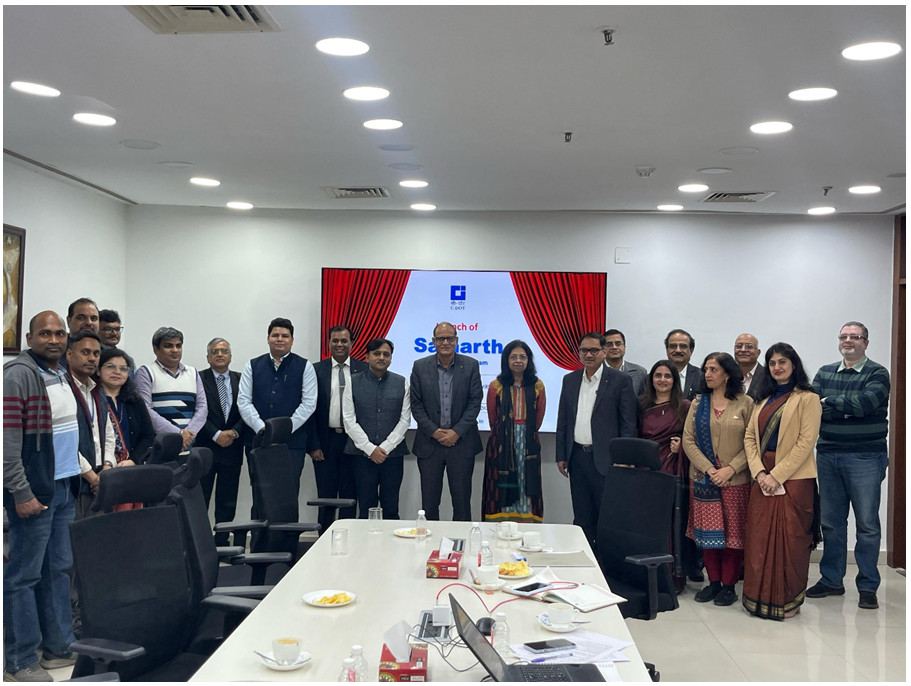
- 22 Mar 2025
In News:
The ‘Samarth’ Incubation Programme is a strategic initiative launched by the Centre for Development of Telematics (C-DOT) to foster startup-driven innovation in India’s rapidly evolving telecommunications and IT sectors. This programme aligns with the goals of Atmanirbhar Bharat and Digital India, aiming to build indigenous capabilities in cutting-edge technologies.
Key Highlights:
- Launched By:Centre for Development of Telematics (C-DOT), an autonomous R&D centre under the Department of Telecommunications (DoT), Government of India.
- Implementation Partner:Software Technology Parks of India (STPI), under the Ministry of Electronics and Information Technology (MeitY), which promotes IT/ITES innovation, startups, and R&D.
- Launch Date:19th March 2025.
- Objective:To support DPIIT-recognized startups developing next-generation technologies in the fields of:
- Telecom Software
- Cybersecurity
- 5G/6G Communications
- Artificial Intelligence (AI)
- Internet of Things (IoT)
- Quantum Technologies
- Program Structure:
- Two cohorts, each of six months duration.
- 18 startups per cohort (Total of 36 startups).
- Hybrid mode of delivery (virtual + physical support).
Support and Benefits Provided
- Financial Assistance:Grant of up to ?5 lakh per selected startup.
- Infrastructure Access:
- Fully furnished office space for 6 months at the C-DOT campus.
- Access to C-DOT’s lab and testing facilities.
- Mentorship & Networking:
- Guidance from C-DOT technical experts and industry leaders.
- Connection with investors, stakeholders, and potential collaborators.
- Future Opportunities:Eligible startups may be offered continued collaboration under the C-DOT Collaborative Research Program, based on their performance and innovation outcomes.
Selection Process
- Eligibility:Open to startups recognized by the Department for Promotion of Industry and Internal Trade (DPIIT).
- Screening:Applications are evaluated through a structured selection process:
- Screening of applications based on innovation potential.
- Pitch presentation before an expert selection committee.
- Final cohort selection.
Significance for India’s Tech Ecosystem
- Promotes self-reliance in telecom and IT hardware/software innovation.
- Encourages the commercialization of research and ideas in emerging technology domains.
- Creates a supportive ecosystem for startups to thrive through structured mentorship and funding.
- Contributes to job creation and skill development in advanced digital sectors.
APAAR ID

- 22 Mar 2025
In News:
The Centre and several State governments are pushing for large-scale adoption of the APAAR ID, leading to concerns over privacy, data security, and its voluntary status.
What is APAAR?
APAAR stands for Automated Permanent Academic Account Registry, a 12-digit unique student identification number. It is a central digital record system introduced under the National Education Policy (NEP) 2020 and is part of the broader ‘One Nation, One Student ID’ initiative. The ID consolidates students’ academic and co-curricular achievements across school and higher education, accessible via DigiLocker and generated through the UDISE+ portal.
Objectives and Benefits:
- Seamless Academic Mobility: Enables smooth transfers between schools and institutions.
- Permanent Record Keeping: Stores marksheets, qualifications, and affiliations in one place.
- Career and Skill Support: Facilitates use in entrance exams, job applications, skill training, and admissions.
- Data for Policymaking: Helps track educational outcomes and inform targeted interventions.
- Integration with Other Platforms:
- DigiLocker: Cloud-based certificate storage recognized under IT Rules, 2016.
- Academic Bank of Credits (ABC): Links credit transfers with APAAR ID.
Is APAAR Mandatory?
- Legally Voluntary: The Union Government clarified in Parliament (Dec 2024) that APAAR registration is not compulsory.
- Implementation Pressure: CBSE and states like Uttar Pradesh have aggressively pushed for 100% coverage, leading to confusion.
- Opt-Out Provision: Parents can submit a written refusal to schools. Templates are available from digital rights organizations like the Software Freedom Law Centre (SFLC).
Generation Process:
- School verifies student’s demographic details.
- Parent/guardian provides consent (especially for minors).
- ID is generated post-authentication.
Key Challenges:
- Privacy Concerns: Collection of children's personal data without a dedicated legal framework raises constitutional questions.
- Section 9(3) of the Digital Personal Data Protection Act, 2023 prohibits tracking and profiling of children.
- Risk of data exposure due to open APIs and lack of cybersecurity safeguards.
- Lack of Transparency: No clear policy document; RTI applications have been redirected multiple times without clear answers.
- Administrative Burden: Teachers duplicate data already recorded under UDISE+, leading to extra workload.
- Technical Glitches: Issues in Aadhaar linking and data mismatches delay generation. Example: Only 24% APAAR generation in Bengaluru Urban South due to such errors.
Way Forward:
- Clear Communication: Government must ensure schools inform parents about the voluntary nature.
- Legal Safeguards: A robust data protection mechanism should be mandated before full-scale rollout.
- Capacity Building: Train school authorities on secure data handling and informed consent procedures.
- Monitoring and Accountability: States should report progress and resolve grievances via helplines and grievance redress mechanisms.
SansadBhashini Initiative
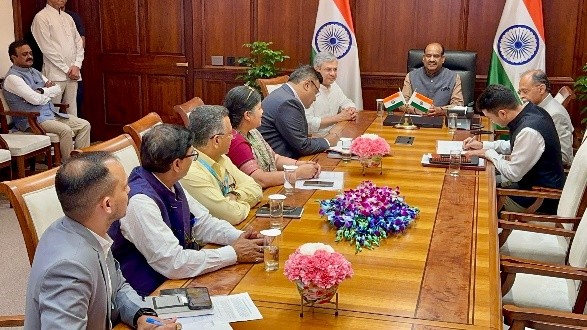
- 21 Mar 2025
In News:
The SansadBhashini Initiative is a collaborative project between the Lok Sabha Secretariat and the Ministry of Electronics and Information Technology (MeitY), launched to enhance digital and linguistic accessibility in India's parliamentary functioning.
About SansadBhashini
- Objective:To provide real-time AI-powered translation and transcription of parliamentary proceedings and documents across multiple Indian languages, ensuring greater transparency, inclusivity, and accessibility.
- Associated Platform:It is built on MeitY’sBhashini platform, a part of the National Language Translation Mission (NLTM), focused on democratizing access to digital content in Indian languages.
Key Features and Technologies Used
- AI-Powered Real-Time Translation: Enables instantaneous multilingual translation of legacy debates, legislative documents, and committee reports.
- Speech-to-Text Transcription System
- Converts spoken parliamentary debates into text with features such as:
- Background noise reduction
- Customizable vocabulary suited for legislative discourse
- High transcription accuracy
- Converts spoken parliamentary debates into text with features such as:
- Automatic Summarization: Generates concise and coherent summaries of long parliamentary discussions, aiding in faster decision-making and better public understanding.
- AI-Driven Chatbot Support
- Assists MPs, researchers, and officials with quick access to:
- Procedural rules
- Parliamentary archives
- Legislative documents
- Assists MPs, researchers, and officials with quick access to:
- Multilingual Accessibility and Inclusivity: Enhances linguistic diversity in governance by making proceedings available in multiple regional languages, thereby fostering greater public engagement.
Significance
- Strengthens e-Governance and digital democracy by making Parliament more accessible to citizens, especially non-Hindi/English speakers.
- Enhances documentation, transparency, and archiving through digitization and AI tools.
- Empowers MPs and legislative staff with real-time information and language tools, improving efficiency.
- Supports India’s Digital India mission and promotes linguistic equity in democratic institutions.
SagarmalaProgramme
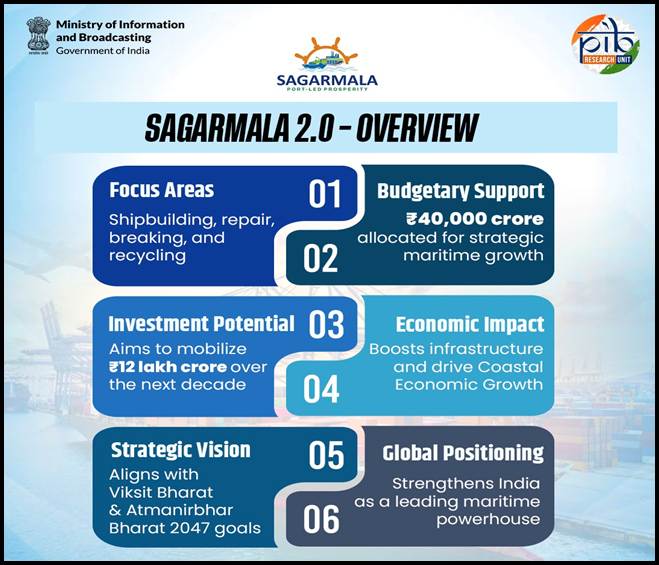
- 21 Mar 2025
In News:
The SagarmalaProgramme, launched by the Ministry of Ports, Shipping & Waterways (MoPSW) in 2015, aims to revolutionize India’s maritime sector by focusing on port-led development, logistics optimization, and coastal economic growth. With a 7,500 km coastline and strategic positioning on global trade routes, India is set to leverage its maritime potential for sustainable economic development.
Key Components of the SagarmalaProgramme
- Port Modernization & New Port Development: Upgrading existing ports and constructing new ones to enhance operational capacity, reduce bottlenecks, and improve efficiency.
- Port Connectivity Enhancement: Fostering seamless multi-modal logistics, including inland waterways and coastal shipping, to optimize time and cost of cargo transportation.
- Port-Led Industrialization: Establishing industrial clusters near ports, boosting economic growth while minimizing logistics costs.
- Coastal Community Development: Focusing on the sustainable development of coastal communities, through skill development, livelihood generation, and fisheries enhancement.
- Coastal Shipping & Inland Waterways Transport: Promoting eco-friendly cargo transportation via coastal and inland waterways to alleviate road and rail congestion.
Key Achievements and Outcomes
- Project Implementation: 839 projects worth ?5.79 lakh crore have been identified, with 272 projects already completed, amounting to ?1.41 lakh crore in investments.
- Growth in Coastal Shipping: Coastal shipping has surged by 118% over the last decade, significantly reducing logistics costs and emissions.
- Increased Inland Waterway Cargo: A 700% increase in inland waterway cargo, reducing congestion on roadways and railways.
- Improved Global Maritime Standing: Nine Indian ports now rank among the world’s top 100, with Vizag among the top 20 container ports globally.
Sagarmala 2.0 and Strategic Initiatives
- Sagarmala 2.0, launched with a ?40,000 crore budgetary support, aims to position India among the top five shipbuilding nations by 2047.
- It introduces a focus on shipbuilding, repair, recycling, and further port modernization, which will help India become a global maritime hub.
- The initiative targets a shipbuilding capacity of 4 million GRT and an annual port handling capacity of 10 billion metric tons.
- Additionally, the Sagarmala Startup Innovation Initiative (S2I2), launched in March 2025, seeks to promote innovation, research, and startups in the maritime sector.
- The program emphasizes green shipping, smart ports, and sustainable coastal development, providing funding, mentorship, and industry partnerships to boost technological advancement in the sector.
Funding and Project Implementation
- The SagarmalaProgramme follows a strategic and stakeholder-driven approach, involving central ministries, state governments, major ports, and other agencies.
- The funding structure utilizes a combination of public-private partnerships (PPP), internal resources of MoPSW agencies, and grant-in-aid for high-social-impact projects.
- The establishment of the Sagarmala Development Company Limited (SDCL) facilitates equity participation in key projects.
Future Outlook and Alignment with Vision 2047
Sagarmala 2.0 and its strategic initiatives are aligned with the Maritime Amrit Kaal Vision 2047 (MAKV), which aims to make India a leader in global maritime affairs. By enhancing port efficiency, expanding shipbuilding capacity, and fostering innovation, these initiatives will support India's vision of a Viksit Bharat (developed India) and Atmanirbhar Bharat (self-reliant India) by 2047.
Revised Rashtriya Gokul Mission (RGM)
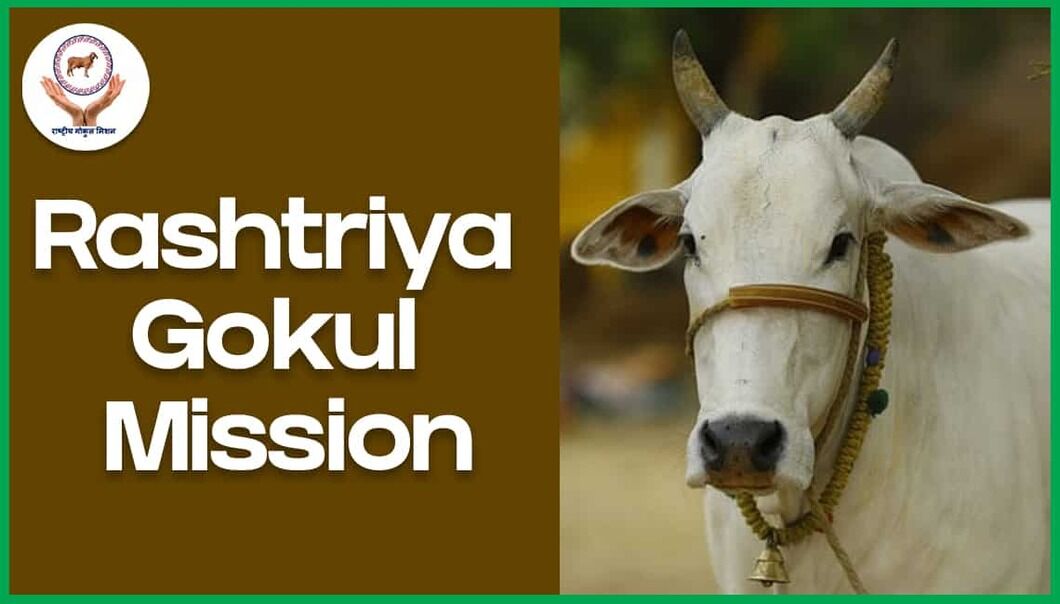
- 21 Mar 2025
In News:
The Union Cabinet has approved the implementation of the Revised Rashtriya Gokul Mission (RGM) for 2024–25 and 2025–26, with an enhanced financial outlay.
Background:
- Launched: December 2014
- Type: Central Sector Scheme under the Development Programmes
- Nodal Ministry: Ministry of Fisheries, Animal Husbandry & Dairying
- Primary Aim: Conservation and development of indigenous bovine breeds and enhancement of milk productivity through advanced breeding technologies.
Revised Allocation:
- Total Outlay: ?3,400 crore
- Additional Allocation: ?1,000 crore for 2024–25 and 2025–26
- Finance Commission Cycle: 15th (2021–22 to 2025–26)
Objectives of Revised RGM:
- Enhance productivity of bovines and sustainable milk production.
- Promote scientific breeding using high genetic merit (HGM) bulls.
- Expand Artificial Insemination (AI) coverage across India.
- Conserve indigenous cattle and buffalo breeds through genomic and reproductive technologies.
Key New Initiatives (2024–26):
- Heifer Rearing Centres:
- One-time assistance of 35% of capital cost.
- To establish 30 housing facilities with a total of 15,000 heifers.
- Interest Subvention Scheme:
- 3% interest subsidy on loans for purchasing HGM IVF heifers.
- Applicable to farmers borrowing from milk unions, banks, or financial institutions.
Major Achievements (as of 2023–24):
- Milk Production Increase: 63.55% rise in 10 years.
- Per Capita Milk Availability:
- 2013–14: 307 grams/day
- 2023–24: 471 grams/day
- Productivity Increase: 26.34% over the last decade.
Nationwide Artificial Insemination Programme (NAIP):
- Coverage: 605 districts with <50% baseline AI coverage.
- Animals Covered: 8.39 crore
- Farmers Benefitted: 5.21 crore
- Service: Free AI at farmer's doorstep.
Technological Interventions:
- IVF Labs: 22 labs set up across States and Universities.
- HGM Calves Born: 2,541 through IVF.
- Indigenous Technologies Developed:
- Gau Chip &Mahish Chip: Genomic chips by NDDB & ICAR-NBAGR.
- Gau Sort: Indian-developed sex-sorted semen technology by NDDB.
Significance:
- Strengthens Atmanirbhar Bharat in livestock genomics and AI.
- Enhances livelihoods of 8.5 crore dairy farmers.
- Preserves India’s indigenous bovine biodiversity.
- Promotes scientific cattle rearing and milk self-sufficiency.
BHIM-UPI Incentive Scheme 2024–25
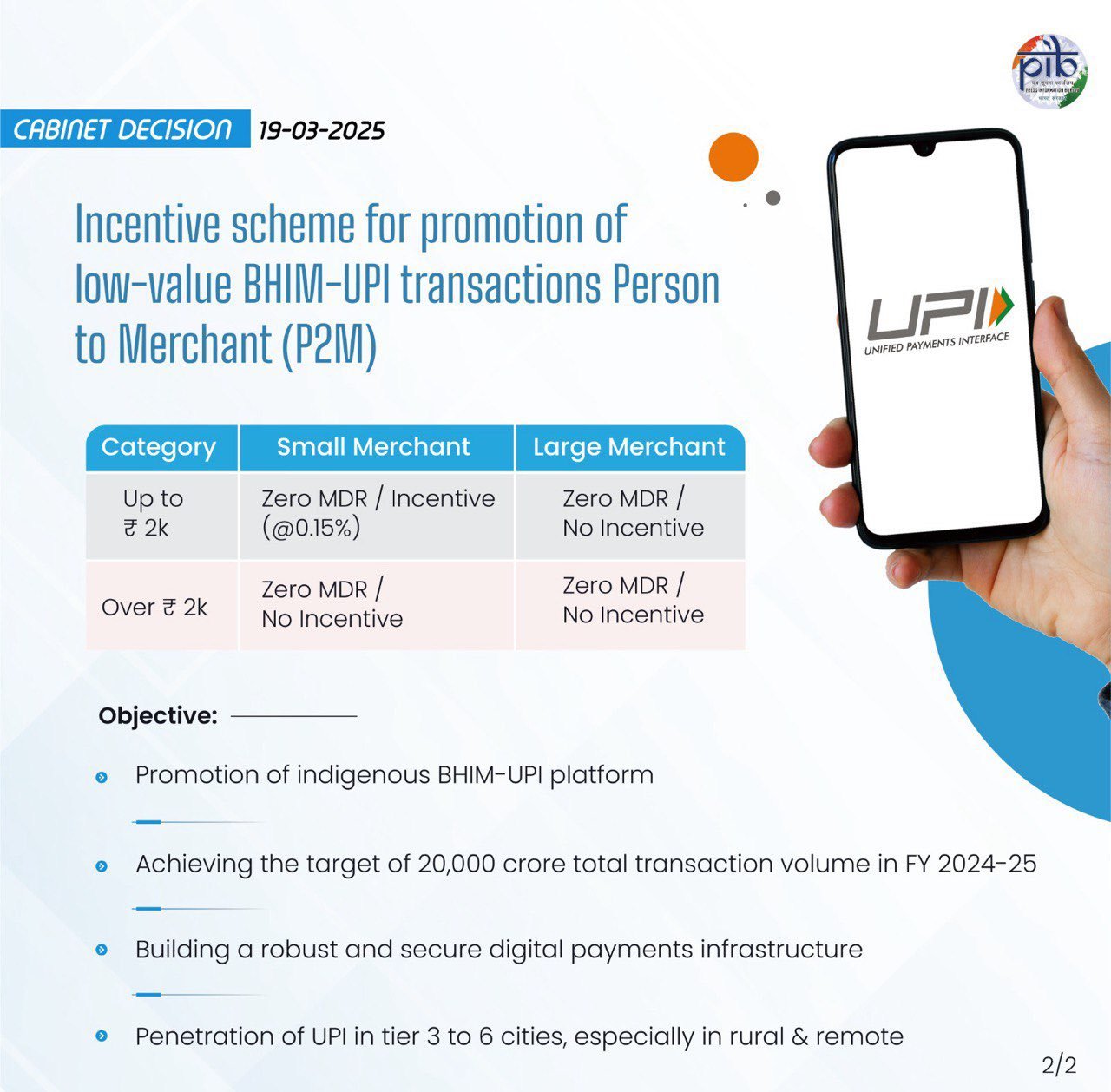
- 20 Mar 2025
In News:
The Union Cabinet, chaired by the Prime Minister, approved the Incentive Scheme for Promotion of Low-Value BHIM-UPI Transactions (Person-to-Merchant or P2M) for FY 2024–25 to encourage digital payment adoption, particularly among small merchants and in rural and remote areas.
Key Features of the Scheme:
- Duration: 1 April 2024 to 31 March 2025
- Outlay: ?1,500 crore
- Coverage: UPI (P2M) transactions up to ?2,000 for small merchants only
- Incentive Rate:0.15% per transaction value
- MDR (Merchant Discount Rate):
- Zero MDR for all UPI P2M transactions
- Incentive applicable only for small merchants on transactions ≤ ?2,000
Incentive Disbursement Conditions:
- 80% of claim amount: Paid upfront each quarter
- Remaining 20%: Conditional on:
- 10%: If acquiring bank’s technical decline < 0.75%
- 10%: If acquiring bank’s system uptime > 99.5%
Objective:
- Promote adoption of indigenous BHIM-UPI platform
- Achieve ?20,000 crore P2M transaction volume in FY 2024–25
- Expand UPI in Tier 3 to Tier 6 cities, especially rural areas
- Promote inclusive tools: UPI 123PAY (for feature phones), UPI Lite/LiteX (offline payments)
Expected Benefits:
- Cost-free UPI usage for small merchants (encouraging cashless transactions)
- Enhanced digital footprint helps merchants access formal credit
- Ensures round-the-clock availability of payment systems
- Strengthens financial inclusion and less-cash economy
- Balanced fiscal support from the government while encouraging systemic efficiency
Digital Payments Background:
- Since January 2020, MDR has been made zero for BHIM-UPI and RuPay Debit Cards via amendments to:
- Payments and Settlement Systems Act, 2007 (Section 10A)
- Income-tax Act, 1961 (Section 269SU)
- Previous incentive outlays (in ? crore):
Financial Year RuPay Debit Card BHIM-UPI Total
2021–22 432 957 1,389
2022–23 408 1,802 2,210
2023–24 363 3,268 3,631
What is BHIM-UPI?
- UPI: Real-time payment system developed by NPCI; allows instant money transfer between bank accounts via mobile apps.
- BHIM-UPI: Government-promoted UPI app launched in 2016.
- NIPL, NPCI’s international arm, is expanding UPI globally. UPI is accepted in Singapore, UAE, France, Sri Lanka, Nepal, and more.
Tren de Aragua
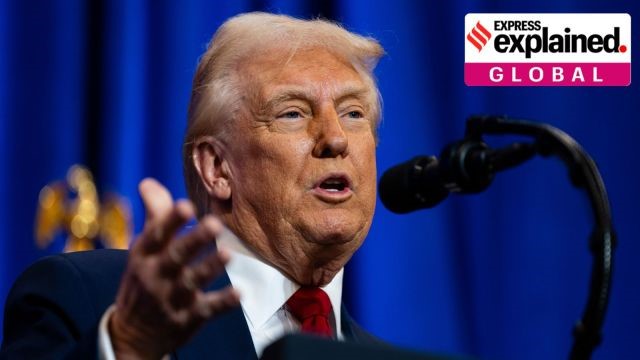
- 20 Mar 2025
In News:
In March 2025, the United States deported 261 Venezuelans, including alleged members of the violent Venezuelan gang Tren de Aragua (TdA). The deportation invoked the Alien Enemies Act of 1798, used for the first time since World War II.
What is the Tren de Aragua (TdA)?
- Origin: Formed in 2014 inside Tocorón Prison in Aragua state, Venezuela.
- Evolution: Began as a prison gang under the “pran” system—where incarcerated crime bosses operated external criminal networks.
- Operations: Expanded amid Venezuela's economic crisis (post-2017) to Colombia, Peru, Chile, and later the United States, exploiting Venezuelan migrants.
- Criminal Activities: Drug trafficking, human trafficking, extortion, murder, and kidnapping.
- International Links: Chile accused the Venezuelan regime of facilitating the murder of a former opposition officer in 2023 via TdA operatives.
Presence in the United States
- Size: Estimated 5,000 global members; only a few hundred suspected in the U.S.
- Incidents: Linked to violent crimes in New York, Florida, Texas, Pennsylvania, California, and a high-profile case in Aurora, Denver.
- Designation: Labeled a "Transnational Criminal Organization" in 2023 by the Biden administration. Assets in the U.S. frozen and a $12 million reward announced for its leaders.
Alien Enemies Act (1798):
- Purpose: Allows the U.S. President to detain, deport, or restrict foreign nationals from hostile nations during war or invasion.
- Historic Use:
- War of 1812: Used against British citizens.
- WWI & WWII: Used for surveillance, restrictions, and internment of citizens from enemy nations (Japanese, Germans, Italians).
- Post-War: Used in 1948 to deport a Nazi operative; upheld by the U.S. Supreme Court.
Controversial Invocation in 2025
- First use since WWII to target non-state criminal actors (TdA).
- The White House termed TdA a "terrorist gang" and a "direct threat to national security".
- Claimed that illegal immigration and cartel activity constituted a modern “invasion”, thereby justifying use of the Act.
- Legal Backing: The Act remains constitutional and in force unless revoked.
- Criticism: Civil rights advocates argue its use may violate due process; calls for repeal by some lawmakers due to historical misuse.
Identification of Gang Members
- Criteria (ICE Directive, 2017): Gang tattoos, prior convictions, confessions, or identification by reliable sources.
- Due Process Concerns: Migrants can be deported even if gang membership is unproven before a judge.
National Wildlife Health Policy (NWHP)
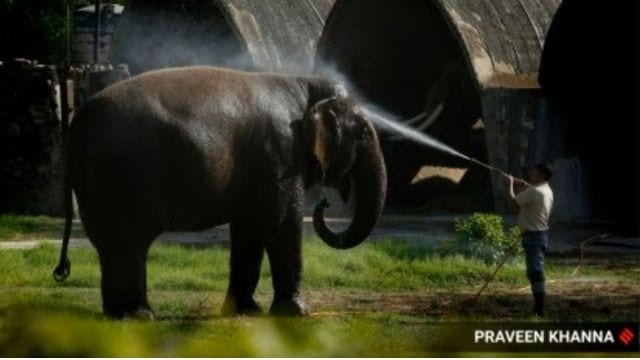
- 20 Mar 2025
In News:
In the aftermath of the COVID-19 pandemic, the Government of India is formulating the National Wildlife Health Policy (NWHP) to address the growing threat of zoonotic diseases through integrated wildlife health management. Over 60% of emerging infectious diseases in humans originate from animals, underscoring the importance of a "One Health" approach—integrating human, animal, and environmental health.
Key Objectives of NWHP
- Establish a comprehensive wildlife disease surveillance system.
- Strengthen diagnostic infrastructure and research capacity.
- Facilitate cross-sectoral collaboration among environment, agriculture, and animal husbandry ministries.
- Integrate existing animal and human health data systems with wildlife health information.
Institutional Framework & Implementation
- National Referral Centre for Wildlife (NRC-W):
- Inaugurated in Junagadh, Gujarat (March 2024).
- India’s first wildlife disease diagnostic and research centre.
- Will serve as a referral hub for investigating wildlife mortality and outbreak events.
- Wildlife Health Information System (WHIS):
- Proposed digital system for real-time disease data collection, reporting, and analysis.
- Will integrate with National Animal Disease Reporting System (NADRS) and National Animal Disease Referral Expert System (NADRES).
- Satellite Diagnostic Labs:To be established near important forest zones for timely wildlife disease detection and diagnosis.
- Community Engagement:Involves measures like cattle vaccination near national parks to reduce disease transmission risks.
Key Agencies Involved
- Central Zoo Authority (CZA): Nodal agency under the Wildlife Protection Act, 1972; responsible for policy coordination and implementation.
- Office of the Principal Scientific Adviser and IIT-Bombay: Supporting technical and policy formulation.
- Ernst & Young: Consultancy support.
- Ministry of Environment, Forest & Climate Change (MoEF&CC): Policy oversight.
Alignment with Existing Conservation Frameworks
- National Wildlife Action Plan (2017–31):
- Provides for 103 actions and 250 projects.
- Includes protocols for disease surveillance in protected areas and tiger reserves.
- Wildlife Protection Act, 1972: Provides legal basis for wildlife health regulation and zoonotic disease control.
Chhareda Panchayat Water Conservation Model
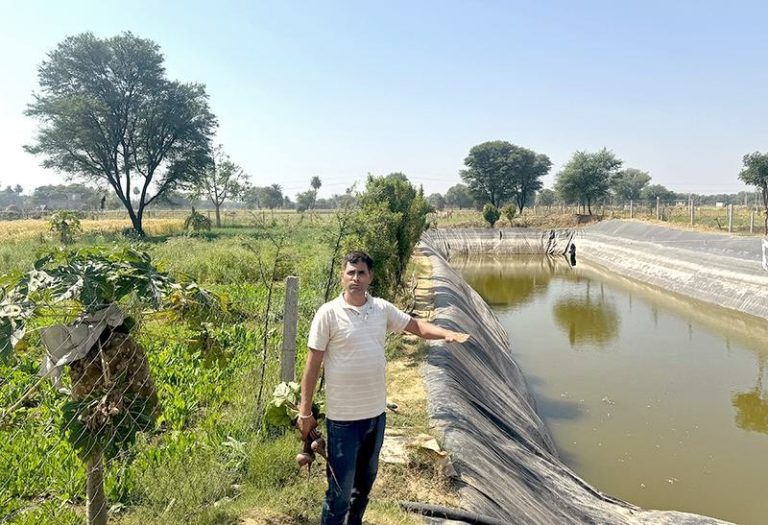
- 19 Mar 2025
In News:
Rajasthan’s Chhareda Panchayat in Dausa district has emerged as a leading example of effective water conservation, driven by a community-driven initiative that has significantly transformed agricultural practices and farmer livelihoods. The project, led by Vipra Goyal, an alumnus of IIT-Kharagpur, has revolutionized water usage in the region through the construction of 250 farm ponds.
Key Aspects:
- Objective:The model aims to address water scarcity and groundwater depletion through rainwater harvesting and the construction of farm ponds, reducing dependence on overexploited groundwater sources.
How Farm Ponds are Contributing to Water Conservation in Rajasthan
- Rainwater Harvesting:Farm ponds serve as storage systems for rainwater, minimizing reliance on deep, contaminated groundwater sources. This helps prevent the further depletion of underground water reserves.
- Year-Round Water Availability:The ponds provide consistent water supply for both kharif and rabi crops, ensuring that farmers can grow crops throughout the year without facing water shortages.
- Groundwater Conservation:By reducing the need to extract groundwater, this initiative has helped conserve approximately 30 crore litres of water annually, easing the pressure on local aquifers.
- Boosting Agricultural Productivity and Income:With reliable water sources, farmers have shifted from subsistence farming to growing cash crops, which has resulted in a collective increase of about ?5 crore in household incomes.
- Reduced Water Pollution:The initiative avoids the use of groundwater contaminated with harmful substances like arsenic and fluoride, which are prevalent in many areas of Rajasthan.
- Sustainability and Climate Resilience:The farm ponds offer a climate-resilient solution, ensuring that agriculture in water-scarce regions is sustainable even in the face of erratic rainfall patterns.
- Cost-Free Construction:The construction of the ponds has been facilitated through CSR funds and government schemes, making the project cost-free for farmers.
International Big Cat Alliance (IBCA)
- 19 Mar 2025
In News:
The International Big Cat Alliance (IBCA), a treaty-based intergovernmental organisation dedicated to the conservation of seven major big cat species, has officially signed an agreement with the Government of India, establishing India as the permanent host of its headquarters and secretariat.
Background and Launch
- Launched: April 2023 by Prime Minister Narendra Modi during the 50th anniversary celebrations of Project Tiger.
- Objective: To facilitate global cooperation for the conservation of seven big cats:Tiger, Lion, Leopard, Snow Leopard, Cheetah, Puma, andJaguar.
- The IBCA is implemented through the National Tiger Conservation Authority (NTCA) under the Ministry of Environment, Forest and Climate Change (MoEFCC).
International Status and Membership
- The IBCA became a treaty-based intergovernmental alliance after five countries ratified the framework agreement:India, Liberia, Eswatini, Somalia, andNicaragua.
- India formally joined the IBCA in September 2023.
- The alliance is open to all UN Member States, including:
- Range countries (where big cats are native), and
- Non-range countries that wish to support conservation efforts globally.
Headquarters and Agreement
- On March 28, 2024, the Union Cabinet approved the establishment of the IBCA headquarters in India.
- An agreement was signed in May 2024 between the IBCA and the Indian government, outlining:
- Privileges and immunities for IBCA personnel,
- Visa facilitation, and
- Operational and legal provisions for the headquarters.
Funding and Support
- India has committed a total of ?150 crore (2023–2028) for:
- Creating a corpus fund,
- Building infrastructure, and
- Meeting recurring expenditures over five years.
Operation ATALANTA
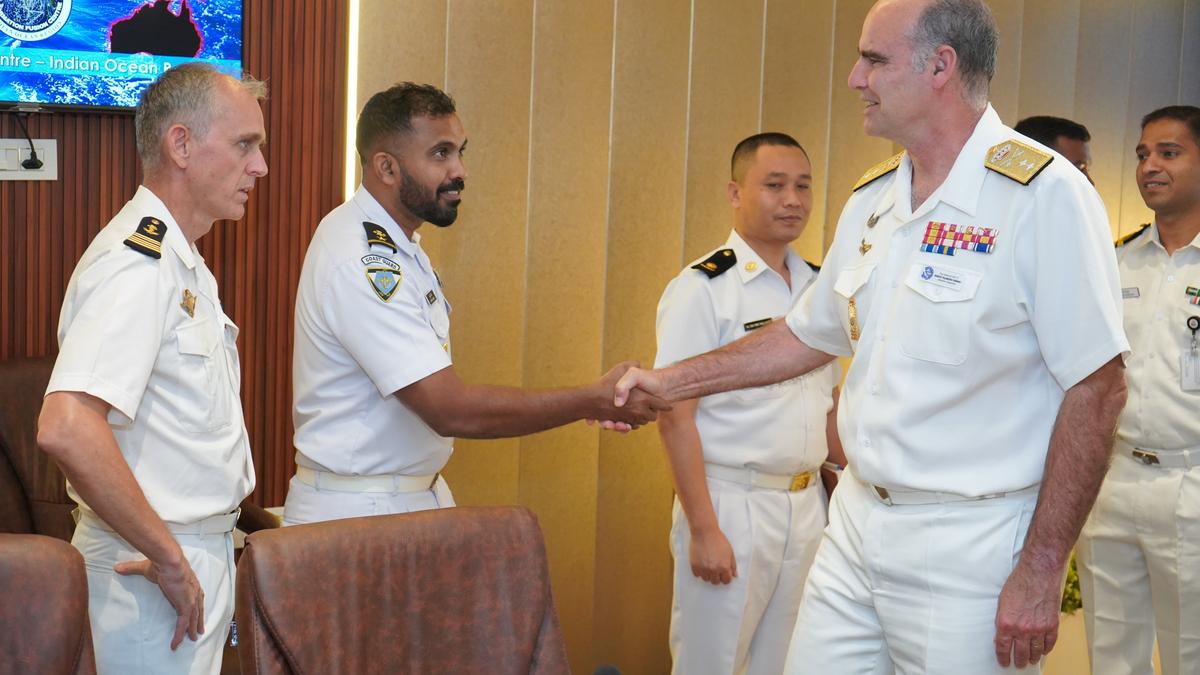
- 18 Mar 2025
In News:
The European Union Naval Force (EUNAVFOR) Operation ATALANTA has proposed a significant joint anti-piracy naval exercise with the Indian Navy, scheduled for the end of May 2025. This initiative reflects the growing strategic cooperation between India and the European Union in maritime security, particularly in the Western Indian Ocean and the Red Sea.
Key Highlights
Proposed Exercise:
- The exercise, if approved, will involve two European warships and the Indian Navy practicing advanced counter-piracy operations, tactical manoeuvres, and inter-naval communications.
- This drill goes beyond the routine Passage Exercises (PASSEX) and aims to enhance interoperability, coordination, and mutual confidence between the two navies.
Strategic Objectives:
- Strengthen maritime security in the Indian Ocean, ensuring it remains a free, open, sustainable, and inclusive area.
- Address resurgent piracy threats, especially off the Horn of Africa, amid ongoing instability in the Red Sea due to Houthi rebel activity.
- Build operational synergy to respond swiftly to piracy incidents-EUNAVFOR claims the capability to tackle pirate cases within 48–72 hours.
Recent Developments:
- Piracy incidents near the Horn of Africa have declined recently, but the threat persists, necessitating continued vigilance and cooperation.
- In 2024, joint anti-piracy efforts led to the apprehension of 70 suspected pirates, with the Indian Navy responsible for 44 captures.
- The Indian Navy is recognized as a major actor in the region, with both sides regularly coordinating through maritime information fusion centers.
Operation ATALANTA: Overview
Aspect Details
Launch Year 2008
Initial Focus Preventing piracy and armed robbery off the Somali coast
Expanded Mandate - Protecting World Food Programme (WFP) vessels
- Enforcing UN arms embargo on Somalia
- Monitoring drug and arms trafficking
- Combating Illegal, Unreported, and Unregulated (IUU) fishing
- Disrupting illicit charcoal trade
Area of Operations Western Indian Ocean and Red Sea
Recent Activities - Joint drills with Indian Navy
- Successful coordination in anti-piracy operations, e.g., MV Ruen hijacking
India–EU Maritime Engagement: Significance
- Geopolitical Context:
- The Indian Ocean is a critical global trade route, and its security is vital for international commerce.
- The resurgence of piracy and instability in the Red Sea has heightened the need for robust maritime partnerships.
- Strategic Partnerships:
- The EU and India share a vision of maintaining maritime order and security.
- The vastness of the Indian Ocean requires significant assets and robust logistics, making cooperation essential.
- Professional Interactions:Encounters with other navies, including China, are described as professional, underscoring the importance of multilateral engagement.
U.S. airstrikes in Yemen

- 17 Mar 2025
In News:
In March 2025, the United States launched a series of airstrikes on Houthi-controlled areas in Yemen, targeting bases, missile defenses, and key leadership. The operation aimed to neutralize threats to international shipping and assert freedom of navigation through the vital Bab-el-Mandeb Strait. The Houthis, backed by Iran, vowed retaliation, intensifying tensions in an already volatile region.
Who are the Houthis?
- Sect and Origin: Houthis belong to the Zaidi Shia sect, primarily based in Yemen’s northwestern Sa’dah province. The movement originated in the 1990s as a sociopolitical rebellion against President Ali Abdullah Saleh’s regime.
- Role in Yemen’s Civil War: Since 2014, the Houthis have controlled large parts of Yemen, including the capital, Sana’a. They are one of the main belligerents in the civil war, opposing the internationally recognized Yemeni government (backed by Saudi Arabia and the U.S.).
- Foreign Links: The Houthis are aligned with Iran and are considered part of the Iran-led "Axis of Resistance" opposing Israel and Western interests in West Asia.
Geopolitical Importance of Yemen
- Strategic Location: Yemen borders Saudi Arabia and Oman and has coastlines along the Red Sea, Gulf of Aden, and Arabian Sea.
- Bab-el-Mandeb Strait: This narrow maritime chokepoint between Yemen and Djibouti is a crucial link between the Indian Ocean and the Mediterranean Sea (via the Suez Canal and Red Sea).
- It is essential for global oil shipments and international maritime trade.
- Disruptions here threaten energy security and commercial shipping routes.
U.S. Justification and Objectives
- Freedom of Navigation: The U.S. stated that the strikes aimed to protect commercial and naval vessels from attacks and ensure navigational freedom.
- Military Goal: According to U.S. officials, the campaign will continue until the Houthis lose the capability to threaten global shipping.
Regional Reactions
- Iran: Strongly condemned the U.S. airstrikes, asserting that Washington had no authority to dictate West Asian security dynamics.
- Houthi Response: Warned of retaliation, indicating a potential escalation in the Red Sea and Arabian Peninsula.
Maritime Security Belt 2025
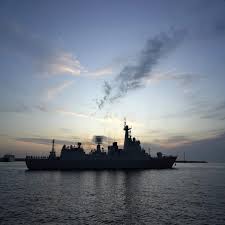
- 16 Mar 2025
In News:
Amid rising tensions over Iran’s expanding nuclear program and threats from Yemen's Houthi rebels, China, Iran, and Russia conducted the Maritime Security Belt 2025 naval exercise in the Gulf of Oman, strategically located near the Strait of Hormuz. This region is of global significance as it serves as a major maritime route, through which a fifth of the world’s crude oil is transported daily.
Key Highlights of the Exercise
- Location: Gulf of Oman, near the Strait of Hormuz, connecting the Persian Gulf to the open seas. This waterway is crucial for global energy supplies and trade.
- Participating Navies:
- Iran: State-run media highlighted the drills as a show of strength, particularly after Israeli strikes targeted Iran’s defense and missile programs.
- Russia: Participated with corvettes Rezky and Aldar Tsydenzhapov as well as the tanker Pechenega. Russia continues to rely on Iran for drone supplies, particularly in the ongoing war in Ukraine.
- China: Sent guided-missile destroyer Baotou and supply ship Gaoyouhu. China maintains deep ties with Iran, especially in the oil sector, despite facing Western sanctions.
- Operational Objectives:
- The exercise aimed to enhance coordination and operational synergy between the three nations, with a focus on maritime security, countering threats to shipping lanes, and addressing global security challenges.
- It featured live-fire drills, night operations, and complex naval maneuvers, ensuring the readiness of all three navies to respond to maritime threats.
- Regional Significance: The Gulf of Oman serves as the only maritime access for Iran to the open seas, making it critical for global trade. The Strait of Hormuz is particularly significant as it handles a significant portion of the world’s oil trade.
Strategic Context and Implications
- Nuclear Tensions: Iran's nuclear program, which has drawn concerns from both Israel and the U.S., remains a central issue in the region. The exercises coincide with the growing concerns over Iran’s stockpiling of uranium enriched to near weapons-grade levels, despite Tehran's assertions that its nuclear ambitions are peaceful.
- Impact of Drills: These joint naval exercises highlight the growing influence of China and Russia in the Middle East, both of which have strategic ties with Iran. While these countries do not patrol the wider Middle East region, their naval presence in the Gulf signals their deepening involvement in the region’s security dynamics, particularly in opposition to the U.S.-led presence.
- Yemen's Role: The Houthi rebels in Yemen have previously targeted international shipping in the Red Sea and Bab el-Mandeb Strait, and have threatened to resume attacks unless humanitarian aid is allowed into Gaza. The instability in the region further complicates security, as seen in the potential for maritime disruptions.
Geopolitical Dimensions
- China’s Interests: China, as a major consumer of Iranian crude oil, continues to engage with Iran despite facing Western sanctions. These drills serve as a symbol of China’s increasing military presence and its growing role in the Middle East, particularly in energy security.
- Russia’s Involvement: Russia's reliance on Iran for bomb-carrying drones in the Ukraine conflict further deepens the military relationship between the two nations. The maritime drills highlight Russia’s interest in securing its position in the Middle East amidst growing tensions with the West.
- U.S. Interests: The U.S., which monitors the region through its 5th Fleet based in Bahrain, remains cautious of the growing military cooperation between China, Russia, and Iran. The drills, especially the interference with GPS systems, have raised concerns about regional stability and the ability to ensure free navigation through critical maritime chokepoints.
Bongosagar 2025 Naval Exercise
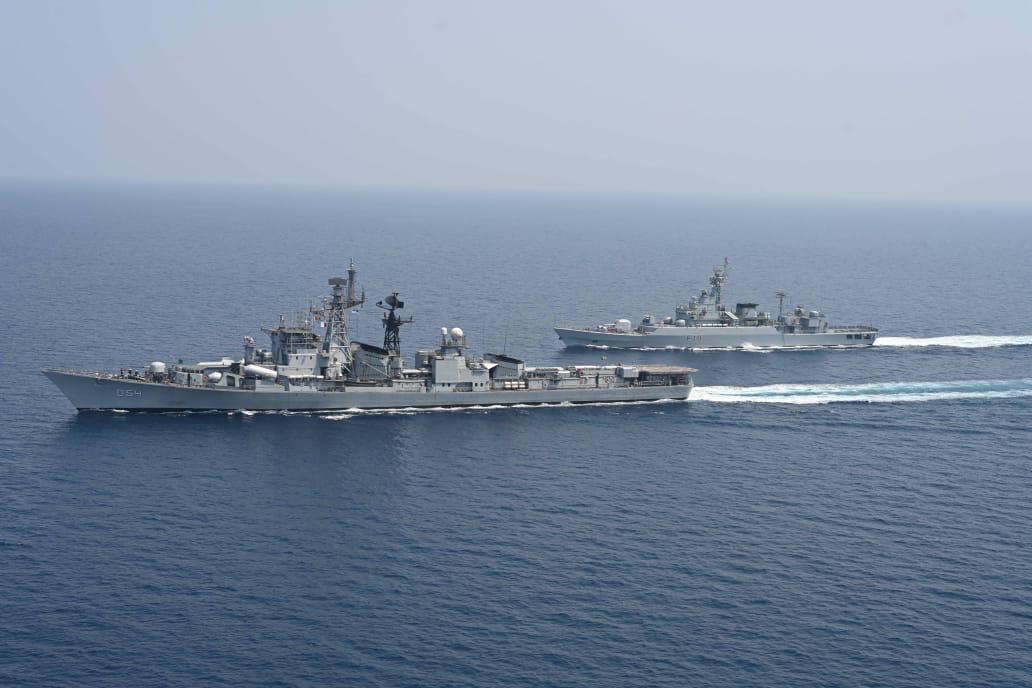
- 16 Mar 2025
In News:
India and Bangladesh conducted the Bongosagar 2025 naval exercise in the Bay of Bengal, aimed at enhancing maritime cooperation, operational interoperability, and regional security. This joint exercise aligns with India's maritime foreign policy doctrine — SAGAR (Security and Growth for All in the Region).
Key Highlights
- Participants:
- Indian Navy: INS Ranvir, a Rajput-class guided missile destroyer, commissioned in 1986.
- Bangladesh Navy: BNS Abu Ubaidah.
- Objectives:
- Strengthen tactical planning, information sharing, and coordinated response capabilities.
- Enhance interoperability for seamless maritime operations.
- Reinforce regional trust and cooperation under the SAGAR framework.
- Exercise Components:
- Surface firing drills
- Tactical manoeuvres
- Underway replenishment
- VBSS (Visit, Board, Search and Seizure) operations
- Cross-deck boarding exercises
- Communication drills
- Professional knowledge quizzes and steam past ceremonies
Strategic Significance
- Supports India’s SAGAR initiative (2015), promoting security and growth in the Indian Ocean region.
- Aligns with the broader MAHASAGAR (2025) vision — Mutual and Holistic Advancement for Security and Growth Across Regions — targeting deeper engagement with the Global South.
- Enhances the ability of both navies to counter maritime threats, uphold freedom of navigation, and ensure regional maritime stability.
India-Bangladesh Defence Cooperation
- Army-level: Exercise Sampriti
- Navy-level: Exercises Bongosagar and Coordinated Patrol (CORPAT)
Raisina Dialogue 2025
- 15 Mar 2025
In News:
The 10th edition of the Raisina Dialogue, India’s premier conference on geopolitics and geo-economics, is scheduled to be held in New Delhi from March 17–19, 2025.
About Raisina Dialogue:
- Launched: 2016
- Organisers: Observer Research Foundation (ORF) in collaboration with the Ministry of External Affairs, Government of India
- Format: Multi-stakeholder, cross-sectoral conference bringing together global leaders in politics, business, media, academia, and civil society
- Modelled On: Munich Security Conference (Germany) and Shangri-La Dialogue (Singapore)
- Annual Venue: New Delhi
- 2025 Theme: Kalachakra: People. Peace. Planet.
Significance for India and the World:
- Provides a platform for dialogue on global strategic and security issues
- Enhances India’s image as a thought leader in international diplomacy
- Fosters multilateral cooperation on contemporary global challenges such as conflict resolution, climate change, technological disruption, and global governance
- Reflects India’s growing role as a bridge between the Global North and Global South
NECTAR to Lead Agri-Tech Revolution
- 14 Mar 2025
In News:
In a major policy and scientific initiative, the Government of India is transforming the Northeast into the country’s next saffron cultivation hub, following the successful model of Jammu & Kashmir’s Pampore. The development is being led by the North East Centre for Technology Application and Reach (NECTAR), an autonomous body under the Department of Science and Technology (DST).
Mission Saffron and the Saffron Bowl Project
Originally launched in 2010–11 for Jammu and Kashmir, Mission Saffron was expanded to the Northeast in 2021 through the Saffron Bowl Project. The initiative now promotes saffron cultivation in Sikkim, Arunachal Pradesh, and Meghalaya, with further expansion planned for Nagaland and Manipur.
Saffron, derived from the stigmas of Crocus sativus, requires high-altitude (approx. 2000m), well-drained loamy or calcareous soils, and a dry to temperate climate. These agro-climatic conditions are present in parts of the Northeast, making it a viable region for saffron farming.
NECTAR’s Role in Agri-Tech and Regional Development
Established in 2014, NECTAR is driving technology-based interventions in agriculture, infrastructure, and economic development across the Northeastern states. The foundation stone for its permanent campus in Shillong was laid in March 2025 by Union Minister Dr. Jitendra Singh, marking a significant boost for scientific infrastructure in the region.
NECTAR's notable initiatives include:
- Saffron cultivation under the Saffron Bowl Project.
- Use of drone technology for land mapping under the Swamitva Yojana.
- Promotion of bamboo-based industries and honey production.
- Supporting indigenous technologies for sustainable rural development.
The Shillong campus is envisioned as a Centre of Excellence for advanced technological demonstrations and skill development, helping bridge last-mile gaps in technology adoption.
Significance for India’s Development
The Northeast is integral to India's aim of becoming a developed nation by 2047. Improvements in connectivity—roads, railways, and air links—have laid the groundwork for economic and scientific transformation in the region. The government sees the Northeast as a key growth frontier to unlock the country’s untapped potential.
Nagorno-Karabakh Conflict
- 14 Mar 2025
In News:
In a landmark development, Armenia and Azerbaijan have finalized a peace agreement in 2024, aiming to end decades of hostilities over the Nagorno-Karabakh region—a flashpoint in the South Caucasus with deep-rooted ethnic and geopolitical tensions.
About Nagorno-Karabakh:
- A landlocked, mountainous region in the South Caucasus, referred to as Artsakh by Armenians.
- Located within internationally recognized Azerbaijani territory, but historically inhabited by ethnic Armenians.
- Features diverse geography: steppe lowlands, dense forests, and alpine meadows.
Historical Background:
- Soviet Era (1920s): USSR established Nagorno-Karabakh as an autonomous region within Muslim-majority Azerbaijan, despite its Armenian Christian majority.
- Post-USSR Collapse (1991): Karabakh declared independence; First Nagorno-Karabakh War (1988–1994) broke out.
- Result: Armenian forces took control of Nagorno-Karabakh and surrounding Azerbaijani districts.
- 2017: A referendum in Karabakh changed the government to a fully presidential system and renamed the region from Nagorno-Karabakh Republic to Republic of Artsakh.
- Second War (2020): Azerbaijan regained significant territory; thousands of soldiers were killed on both sides.
- 2023 Azerbaijani Offensive: In a swift one-day operation, Azerbaijan reasserted full control over the region.
- The Republic of Artsakh (unrecognized government) was officially dissolved in 2024.
- Over 1 lakh ethnic Armenians fled to Armenia.
India’s Position:
- India maintains a neutral stance, supports a peaceful diplomatic resolution under the aegis of the OSCE Minsk Group.
- Both Armenia and Azerbaijan are part of the International North-South Transport Corridor (INSTC), critical for India’s strategic connectivity and trade with Central Asia and Russia.
Madhav National Park
- 13 Mar 2025
In News:
Madhav National Park in Madhya Pradesh has been declared India’s 58th Tiger Reserve and the 9th in Madhya Pradesh, strengthening the state's status as a leader in tiger conservation.
About Madhav National Park
- Location: Shivpuri district, Madhya Pradesh; part of the Chambal region and the Upper Vindhyan Hills on the northern fringe of the Central Highlands.
- Established: As Madhya Bharat National Park in 1955; renamed Madhav National Park in 1959.
- National Park Status: Since 1958.
- Area: Approx. 354 sq km (expanded from 165 sq km).
- Historical Significance: Former hunting ground of Mughal emperors and Maharaja of Gwalior; named after Maharaja Madhav Rao Scindia.
Ecological Profile
- Vegetation:
- Northern Tropical Dry Deciduous Forests
- Dry Thorn Forests typical of North-Western Madhya Pradesh
- Fauna:
- Large Mammals: Tigers, leopards, wolves, jackals, foxes, wild dogs
- Antelopes: Nilgai, Chinkara, Chowsinga
- Deer Species: Chital, Sambar, Barking Deer
- Others: Crocodiles, porcupines, wild pigs, pythons
- Aquatic Ecosystems:
- Two major lakes: Sakhya Sagar and Madhav Sagar support aquatic biodiversity
Tiger Conservation Highlights
- Declared a Tiger Reserve: In 2024, becoming India’s 58th and Madhya Pradesh’s 9th.
- Tiger Reintroduction: Began in 2023; currently home to five tigers, including two cubs.
- Core and Buffer Zones:
- Core Zone: Strictly protected, no human activity
- Buffer Zone: Allows limited, regulated human use to support coexistence
Governance and Protection Framework
- Tiger Reserve Status:
- Notified under Section 38V of the Wildlife Protection Act, 1972
- Falls under Project Tiger (1973), monitored by the National Tiger Conservation Authority (NTCA)
- Approval Process:
- State Government Proposal
- NTCA Evaluation
- MoEFCC Final Notification
- Monitoring System: M-STrIPES (Monitoring System for Tigers – Intensive Protection and Ecological Status) used for surveillance and conservation.
Mukhyamantri Majhi LadkiBahin Yojana
- 13 Mar 2025
In News:
Ahead of International Women's Day 2025, the Maharashtra government has promised to deposit the 8th and 9th installment of Mukhyamantri Majhi LadkiBahin Yojana
Objective:
A flagship women-centric welfare scheme launched by the Maharashtra government in 2024 to provide monthly financial assistance to economically disadvantaged women and promote their socio-economic empowerment.
Key Features:
- Target Group: Economically weaker women aged 21 to 65 years, who are permanent residents of Maharashtra.
- Eligibility Criteria:
- Annual family income must not exceed ?2.5 lakh.
- No family member should be an income taxpayer.
- Financial Assistance: ?1,500 per month via Direct Benefit Transfer (DBT).
- Scheme Performance (as of Dec 2024):
- Total disbursement: ?17,500 crore
- Total beneficiaries: 2.38 crore women
Recent Update (March 2025):
- Installment Release: On the occasion of International Women’s Day 2025, the government released the 8th and 9th installments (?3,000 total) to 2.52 crore women for the months of February and March.
- Delay & Clarification: Due to technical delays in February’s payment, both months' amounts were disbursed together in March 2025.
Policy Outlook:
- Proposed Enhancement: During the 2024 election campaign, the government promised to raise the monthly benefit from ?1,500 to ?2,100.
- Current Status: No official decision has been made regarding the increase as of the 2025 budget session.
5th Edition of Lineman Diwas
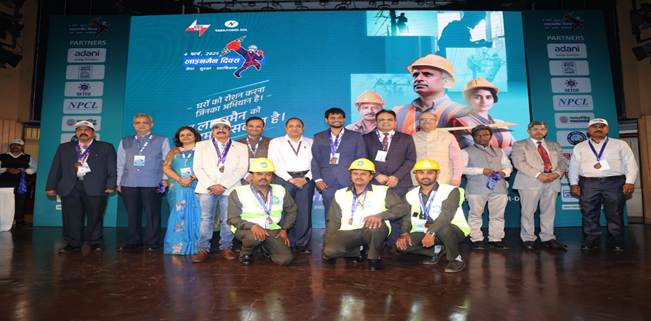
- 11 Mar 2025
In News:
The Central Electricity Authority (CEA), in partnership with Tata Power Delhi Distribution Ltd (Tata Power-DDL), organized the 5th Edition of Lineman Diwas on March 4, 2025, in New Delhi. The event commemorates the invaluable service of linemen and ground maintenance staff—frontline workers vital to ensuring uninterrupted power supply across India.
Key Highlights:
- Theme: Seva, Suraksha, Swabhiman (Service, Safety, Self-respect).
- Over 180 linemen from 45+ state and private utilities attended.
- Recognized 5 linemen and 4 DISCOMs for exemplary safety and service standards.
- Special Anthem on linemen launched by CEA Chairperson Ghanshyam Prasad.
- Safety videos and demonstrations of modern equipment were showcased.
- Participants visited the Distribution Operations & Safety Excellence Center (DOSEC) for exposure to training modules and tools.
The event highlighted the importance of Hotline Maintenance Training, which enables linemen to safely work on live power lines, improving both worker safety and power grid reliability.
About Central Electricity Authority (CEA):
- Statutory Body under the Ministry of Power, Govt. of India.
- Established: Originally under Electricity (Supply) Act, 1948; reconstituted under Electricity Act, 2003.
- Headquarters: New Delhi.
- Functions:
- Advises government on electricity policy, planning, and technical standards.
- Monitors power generation, transmission, and distribution efficiency.
- Promotes safety, training, and regulatory compliance.
- Key Divisions:
- Power Planning & Monitoring
- Grid Operations & Transmission
- Distribution & Regulatory Affairs
- Safety & Training
Open Market Operations
- 11 Mar 2025
In News:
The Reserve Bank of India (RBI) has announced a liquidity injection of ?1.9 lakh crore into the banking system through Open Market Operations (OMOs) and USD/INR forex swaps, in response to tightening liquidity conditions observed since December 2024.
What are Open Market Operations (OMOs)?
- Open Market Operations refer to the buying and selling of government securities in the open market by the central bank to regulate liquidity in the banking system.
- It is a monetary policy tool used to manage inflation and ensure financial stability.
How OMOs Work:
- To inject liquidity: RBI purchases government securities from banks, increasing their cash reserves, which lowers interest rates, encourages lending, and boosts economic activity.
- To absorb liquidity: RBI sells government securities, reducing cash reserves in the system, which raises interest rates, discourages excessive lending, and cools inflation.
RBI’s Recent Measures (March 2025):
- OMO Purchase Auctions:Government securities worth ?1 lakh crore to be bought in two tranches of ?50,000 crore each on March 12 and March 18.
- Forex Swap Auction:
- A USD/INR Buy/Sell Swap worth $10 billion with a 36-month tenor, scheduled for March 24, to inject long-term dollar liquidity.
- A similar $10 billion swap was conducted on February 28, which saw strong demand.
Dragon Copilot
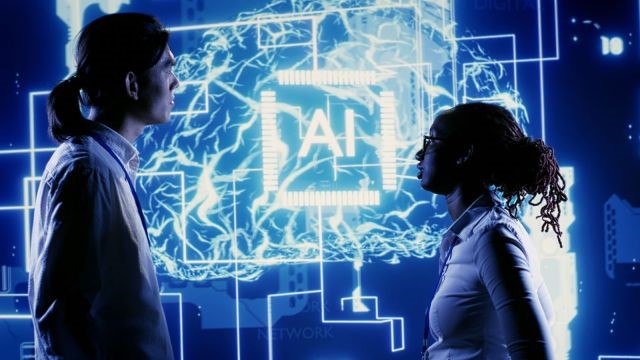
- 10 Mar 2025
In News:
Microsoft has launched Dragon Copilot, a voice-activated AI assistant designed specifically for the healthcare sector. It aims to reduce administrative burdens on clinicians by automating documentation and providing quick access to medical information.
Key Features and Functionalities:
- Platform Integration: Part of Microsoft Cloud for Healthcare, Dragon Copilot integrates with Electronic Health Records (EHR) and is accessible via desktop, browser, or mobile app.
- Technology Base: Built on Nuance’s Dragon Medical One (DMO) and DAX (Dragon Ambient eXperience) platforms, which have supported transcription of billions of patient records and over 3 million ambient patient interactions.
- Voice & AI Capabilities:
- Uses natural language dictation and ambient listening technologies.
- Enhanced with generative AI and healthcare-specific safeguards.
- Allows drafting of memos, referral letters, clinical summaries, and after-visit notes in personalized formats.
- Facilitates real-time voice-to-text transcription and AI-generated notes via user prompts or templates.
- Supports automated search for verified medical information.
Benefits:
- Reduces clinician paperwork and burnout, enhancing focus on patient care.
- Survey Data (Microsoft Findings):
- Saves ~5 minutes per patient interaction.
- 70% clinicians reported reduced fatigue.
- 62% were less likely to leave their organizations.
- 93% patients reported improved experiences.
Concerns and Risks of Healthcare AI:
- AI Hallucinations: Tools like OpenAI’s Whisper have produced fictitious content, including inappropriate or incorrect medical information.
- Regulatory Caution:
- The US FDA warns of risks from generative AI in healthcare, including false diagnoses or biased outputs.
- Emphasizes the need for transparent and accountable development practices.
- Microsoft’s Response:
- Claims to have integrated “clinical, chat, and compliance safeguards” into Dragon Copilot.
- Built in alignment with Microsoft’s Responsible AI principles, although technical specifics remain undisclosed.
Broader AI Healthcare Landscape:
- Companies like Google Cloud, Abridge, and Suki are developing similar AI-based healthcare assistants.
- Growing interest in generative AI for reducing clinician workload and improving patient outcomes is driving innovation and investment across the sector.
Doubtful (D) Voters in Assam
- 10 Mar 2025
In News:
The issue of ‘D’ (Doubtful) voters recently resurfaced in the Assam Legislative Assembly, with the Opposition demanding closure of the state’s lone detention centre (now termed a transit camp) and the tabling of the National Register of Citizens (NRC) report.
Who are ‘D’ Voters?
‘D’ voters are individuals whose Indian citizenship is under suspicion. Introduced by the Election Commission of India (ECI) in 1997 specifically for Assam, these individuals are barred from voting or contesting elections until their citizenship is verified.
Legal and Procedural Aspects:
- Not Defined in Law: The term 'Doubtful Voter' is not defined under the Citizenship Act, 1955 or the Citizenship Rules, 2003.
- As per Citizenship Rules, 2003:
- The Local Registrar must mark individuals with doubtful citizenship in the National Population Register (NPR) for further verification.
- Affected individuals must be informed through a prescribed format and granted a hearing before the Taluk or Sub-district Registrar.
- A decision on citizenship status must be made within 90 days.
- Foreigners Tribunal (FT): Cases of D-voters are referred to FTs, which decide whether the person is an Indian citizen or a foreigner. Based on the verdict, individuals can be:
- Cleared and subsequently included in the NRC and electoral rolls.
- Declared foreigners, leading to deportation or detention.
Key Features of D-Voter Status:
- Temporary Tag: The 'D' classification is not permanent and must be resolved within a set timeframe.
- Appeal Mechanism: Individuals can appeal to the Foreigners Tribunal for clearance.
- Impact on Families: Often, some members of a family are citizens while others are tagged as D-voters, leading to legal and social complications.
- Detention Concerns: Several individuals, including potential Indian citizens, have been detained for years without a clear mechanism for release.
Recent Developments:
- Political demands in Assam include the closure of detention centres and transparency regarding NRC implementation.
- Debates continue over the legal ambiguity and humanitarian implications of the D-voter category.
U.S. Reciprocal Tariffs
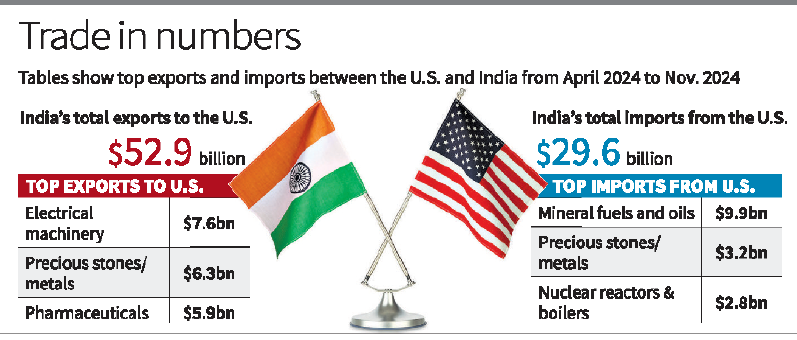
- 09 Mar 2025
In News:
On April 2, 2025, the United States is set to implement reciprocal tariffs as announced by President Donald Trump during his address to a joint session of the U.S. Congress. The move targets major trade partners including India, China, the European Union, Canada, and Mexico.
What Are Reciprocal Tariffs?
- Definition: A reciprocal tariff is a trade measure in which a country imposes import duties equal to the tariffs its exports face in other nations.
- Objective: To establish a level playing field, correct trade imbalances, and respond to unfair tariff structures by trading partners.
- Application:
- If a foreign nation imposes high tariffs on U.S. goods, the U.S. will match that rate on goods imported from that country.
- Applies to goods, services, and even non-tariff barriers limiting U.S. market access.
Why Now? Trump’s Trade Strategy
- President Trump cited India’s high tariffs on automobile imports (reportedly over 100%) as an example of unfair trade.
- The U.S. also flagged China, EU, Brazil, and Mexico for imposing higher duties on U.S. exports.
- Trump emphasized that the U.S. has been “taken advantage of for too long” and that reciprocal tariffs are necessary to protect American jobs and industry.
WTO Implications
- May violate WTO's Most-Favoured-Nation (MFN) rule, which mandates equal treatment of trade partners.
- The U.S. could invoke Article XX (general exceptions) or Article XXI (national security exception) of the WTO Agreement to justify its policy.
Potential Impacts of Reciprocal Tariffs
Positive Impacts Negative Impacts
Boosts U.S. manufacturing by reducing import dependency May trigger retaliatory tariffs,
escalating trade wars
Encourages tariff reductions by partner nations Leads to higher import prices and
consumer inflation
Aims to reduce the trade deficit Causes economic uncertainty
and hurts investor confidence
Promotes domestic job creation May lead to WTO disputes and
strain diplomatic relations
Cities Coalition for Circularity (C-3)
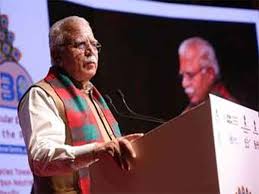
- 09 Mar 2025
In News:
Manohar Lal, Union Minister for Housing and Urban Affairs, announced the Cities Coalition for Circularity (C-3), a multi-nation alliance for city-to-city collaboration, knowledge-sharing, and private sector partnerships.
- Platform: 12th Regional 3R and Circular Economy Forum in Asia and the Pacific
- Venue: Rajasthan International Centre, Jaipur, Rajasthan
What is C-3?
- The Cities Coalition for Circularity (C-3) is a multi-national alliance aimed at enhancing city-to-city collaboration, knowledge-sharing, and public-private partnerships.
- It focuses on promoting circular economy principles, resource efficiency, and low-carbon development.
Organizers and Supporters:
- Organized by: Ministry of Housing and Urban Affairs (India), United Nations Centre for Regional Development (UNCRD), and Institute for Global Environmental Strategies (IGES)
- Supported by: United Nations ESCAP, Ministry of Environment (Japan), and other global organizations
Key Announcements:
- Formation of a Working Group to finalize the coalition’s structure and operational framework
- Adoption of the Jaipur Declaration (2025–2034) – a nonpolitical, nonbinding declaration guiding the next decade of action for resource-efficient and sustainable urban growth
Highlights of the Forum:
- Theme: Realizing Circular Societies Towards Achieving SDGs and Carbon Neutrality in Asia-Pacific
- 3R India Pavilion: Inaugurated by Union Minister and Rajasthan CM Bhajanlal Sharma, showcasing 40+ Indian and Japanese start-ups in waste management and circular solutions
What is a Circular Economy?
A circular economy is a regenerative system where:
- Products, materials, and resources are maintained in use for as long as possible
- Waste is minimized through reuse, recycling, remanufacturing, composting, etc.
- It aims to decouple economic growth from resource consumption, addressing climate change, pollution, and biodiversity loss.
‘One Day as a Scientist’ Initiative
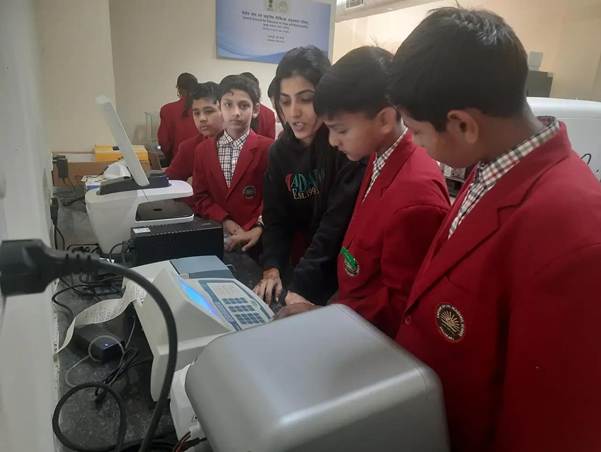
- 07 Mar 2025
In News:
In response to Prime Minister Narendra Modi’s call during his Mann Ki Baat address, the Ministry of Ayush has launched the ‘One Day as a Scientist’ initiative. This program offers students an immersive experience in scientific research, providing them hands-on exposure to advanced laboratory equipment and modern research methodologies. The initiative aims to nurture the scientific temperament among young minds and encourage them to explore the integration of traditional medicine with modern science.
Key Features of the Initiative:
- Hands-on Lab Experience: Students visit Ayush research institutions where they explore cutting-edge scientific tools and technologies, gaining firsthand insight into the research process.
- Mentorship by Experts: Scientists and researchers guide students, offering valuable insights into research methodologies and the potential of Ayush systems in mainstream healthcare.
- Integration of Traditional and Modern Sciences: The initiative emphasizes the role of Ayush therapies, including Ayurveda, Yoga, Naturopathy, and Homeopathy, combined with modern scientific advancements.
- Nationwide Participation: The program is implemented across various institutions such as the National Institute of Ayurveda, Central Council for Research in Homoeopathy (CCRH), and the Central Research Institute for Yoga & Naturopathy (CRIYN), facilitating student engagement in scientific exploration.
Objectives of the Initiative:
- Encouraging Youth Participation: By providing direct exposure to scientific research, the initiative aims to inspire students to pursue careers in research and innovation.
- Bridging the Gap Between Traditional and Modern Medicine: The program focuses on scientifically validating and innovating traditional medicine, making it an integral part of India’s healthcare system.
- Fostering a Scientific Temperament: Students gain a deeper understanding of scientific processes, enhancing their curiosity and critical thinking, key traits for future leaders in research and innovation.
Alignment with National Science Day:
The National Science Day 2025 theme, “Empowering Indian Youth for Global Leadership in Science and Innovation for Viksit Bharat,” aligns perfectly with the goals of this initiative. The program aims to inspire students to become future leaders in science and innovation, contributing to India’s vision of becoming a developed nation.
Juanga Tribe
- 06 Mar 2025
In News:
The National Human Rights Commission (NHRC) has sought an Action Taken Report (ATR) from the District Magistrate of Keonjhar, Odisha, over alleged human rights violations concerning the Juanga tribe, a Particularly Vulnerable Tribal Group (PVTG) in the region.
About Juanga Tribe
- One of 13 PVTGs among 62 tribal communities in Odisha.
- Population: ~50,000 (2011 Census).
- Primarily located in Keonjhar and Dhenkanal districts, especially in the Gonsaika hills of Banspal block, Keonjhar.
- Language: Juang, a Munda language of the Austroasiatic family.
- Known for their clan structure, kinship ties, and animistic beliefs blended with Hindu practices. Their sun god is regarded as the supreme deity.
- Traditional livelihood: Initially hunters and gatherers, later adapted to basket-weaving and bartering after forest reserves were declared during British rule.
- Traditional clothing: Women wore leaf girdles; men used small loincloths. Post-contact, they adopted external clothing practices.
Alleged Human Rights Violations
- The petition highlighted lack of basic amenities in 114 Juanga villages:
- Healthcare: Nearest PHC is 15 km away; residents must carry patients on cots. Limited access to Biju Swasthya Kalyan Yojana or National Health Card.
- Infrastructure: Absence of all-weather roads, schools, and safe drinking water.
- Tragic case: Deaths of SuniaJuanga (35), his wife Rashmi (30), and their six-month-old daughter due to lack of timely medical help in Jantari village.
- Social issues: No official records on child marriages, orphans, or other vulnerable groups among the Juangas.
NHRC's Directive
- NHRC asked for a detailed report within four weeks from the district administration.
- The petition also criticized underutilization of the District Mineral Foundation (DMF) funds, despite Keonjhar being one of the top fund-holding districts.
India–Nepal MoU on WASH Sector Cooperation
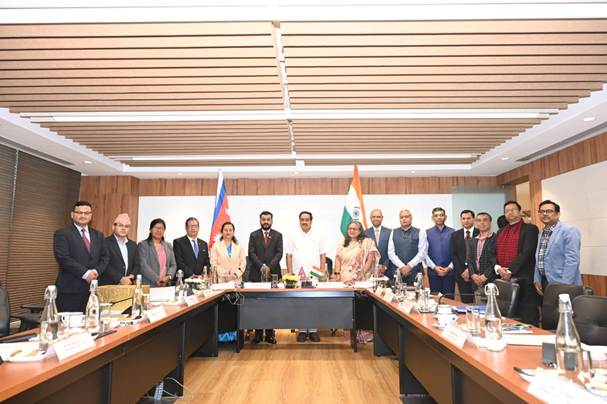
- 06 Mar 2025
In News:
Recently, India and Nepal signed a Memorandum of Understanding (MoU) to strengthen bilateral cooperation in the Water, Sanitation, and Hygiene (WASH) sector, including waste management. The signing ceremony took place at Sushma Swaraj Bhawan, New Delhi.
Key Objectives and Components of the MoU
- Capacity Building: Training programs for Nepali personnel in water resource management.
- Technology and Knowledge Transfer: Exchange of best practices and innovations in WASH.
- Groundwater Management: Joint efforts on:
- Groundwater quality monitoring
- Artificial recharge
- Rainwater harvesting and conservation practices
Strategic Significance
- Promotes regional cooperation and sustainability in public health and water management.
- Nepal seeks to learn from India’s successful initiatives under the Jal Jeevan Mission and Swachh Bharat Abhiyan.
- The agreement includes official visits, site inspections, and regular bilateral meetings to monitor progress.
Sashakt Panchayat-Netri Abhiyan
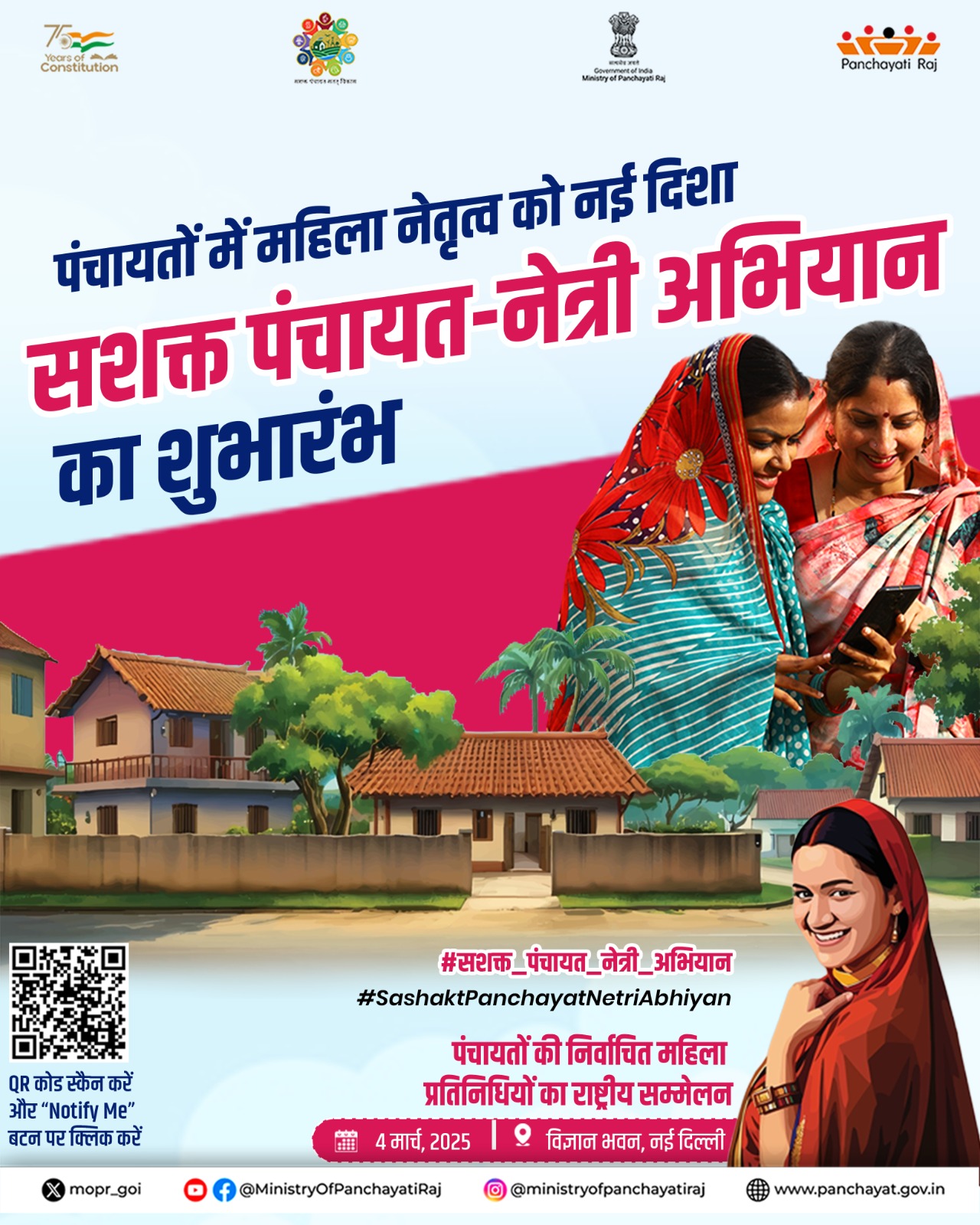
- 06 Mar 2025
In News:
The Ministry of Panchayati Raj launched the “Sashakt Panchayat-Netri Abhiyan” at a National Workshop held in Vigyan Bhawan, New Delhi. The initiative is a significant step toward gender-sensitive governance and enhancing the role of Women Elected Representatives (WERs) in Panchayati Raj Institutions (PRIs).
Key Features of the Initiative
- Objective: Capacity-building of WERs to strengthen their leadership, decision-making, and active participation in local governance.
- Scale: Over 1,200 WERs from across India participated.
- Representation: Women from all three tiers of PRIs took part, marking a first-of-its-kind national gathering.
Model Women-Friendly Gram Panchayats (MWFGPs)
- Launched alongside the Abhiyan.
- Aim: Establish at least one Model Women-Friendly Gram Panchayat in each district.
- Purpose: Promote gender-sensitive, inclusive, and girl-friendly local governance models.
Primer on Gender-Based Violence
- A "Primer on Law Addressing Gender-Based Violence and Harmful Practices" was released.
- Targeted at elected representatives to raise awareness and promote legal literacy regarding women's safety and rights.
Context and Background
- India has over 1.4 million women elected representatives in PRIs.
- Some states, like Bihar, report over 50% representation, surpassing the 33% constitutional mandate.
- The campaign also addresses the elimination of "Sarpanch Pati" culture, emphasizing the independent authority of WERs.
Panel Discussions and Sectoral Themes
- Themes included:
- Women’s participation and leadership in PRIs
- Health, education, safety, digital empowerment, and economic opportunities for women
Cultural Integration and Recognition
- Cultural performances by UNFPA celebrated women’s achievements.
- Outstanding WERs from various states/UTs were felicitated for contributions to rural governance.
Significance
- Aligns with PM Narendra Modi’s “Mann Ki Baat” (119th episode) highlighting Nari Shakti in nation-building.
- Reinforces commitment to inclusive, safe, and socially just Gram Panchayats.
Giloy (Tinosporacordifolia)
- 06 Mar 2025
In News:
Giloy, also known as Guduchi and referred to as Amrita in Sanskrit—meaning the "herb of immortality"—is gaining global attention for its therapeutic potential, with scientific research on the herb witnessing a remarkable surge.
Surge in Scientific Publications
According to PubMed, a globally recognised biomedical database, there has been a 376.5% increase in research publications on Giloy between 2014 and 2024:
- 2014: 243 studies
- 2024: 913 studies
This significant rise reflects growing interest in natural and plant-based therapies, particularly after the COVID-19 pandemic, which intensified focus on immunity boosters and holistic healthcare.
Therapeutic Properties and Uses
- Giloy is used in Ayush systems for:
- Fever management
- Gouty arthritis
- Autoimmune diseases
- Inflammatory disorders
- Cancer therapy (emerging evidence)
- Bioactive compounds in Giloy have shown:
- Immunomodulatoryeffects
- Anti-inflammatoryaction
- Adaptogenicandantiviralproperties
Botanical & Agricultural Features
- Scientific name: Tinosporacordifolia
- Distribution: Widely found across India
- Growth conditions:
- Grows in most soil types
- Propagated via stem cuttings (May–June)
- Large climber with corky, grooved stems
Recent Research Highlights
- Feb 2025 (Gujarat University): Giloy extracts showed promise in HPV-positive cervical cancer treatment through immunomodulation.
- Jan 2025 (Tata Memorial Centre, Mumbai): Giloy-based phytopharmaceuticals were effective in managing Idiopathic Granulomatous Mastitis (IGM), offering a safe, steroid-free, and cost-effective alternative to surgery.
Government Initiatives
- The Ministry of Ayush has launched a technical dossier on Giloy, compiling scientific research and therapeutic insights.
- Aim: Promote evidence-based integration of Ayurveda with modern healthcare systems.
- Emphasis on global collaboration, research funding, and mainstreaming traditional medicine.
Obesity in India: A Public Health Challenge
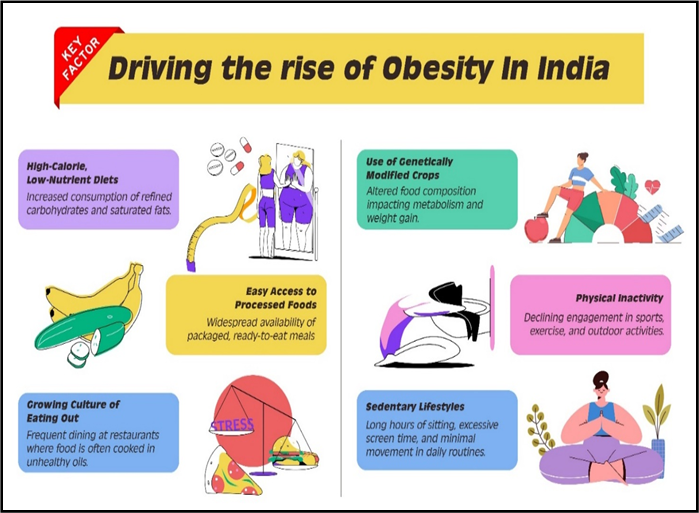
- 05 Mar 2025
In News:
Obesity has emerged as a critical public health issue in India, with rising prevalence across age groups and socio-economic strata. It is a key risk factor for non-communicable diseases (NCDs) like diabetes, cardiovascular diseases, and hypertension. Recognizing its growing burden, the Government of India has adopted a multi-ministerial, community-driven, and policy-integrated strategy to promote healthier lifestyles.
What is Obesity?
- Definition (WHO): Abnormal or excessive fat accumulation that presents a risk to health.
- Measurement: Body Mass Index (BMI = kg/m²)
- Body Mass Index (BMI), previously known as the Quetelet index, is a simple way to check if an adult has a healthy weight. It is calculated by dividing a person's weight in kilograms by their height in meters squared (kg/m²). To find BMI, take a person’s weight (kg) and divide it by their height (m) squared.
- WHO Standard:
- Overweight: BMI ≥ 25
- Obese: BMI ≥ 30
- Indian Criteria (lower threshold):
- Overweight: BMI 23–24.9 kg/m²
- Obese: BMI ≥ 25 kg/m²
- Morbid Obesity: BMI ≥ 35
Prevalence of Obesity
Global Trends (1990–2022):
- Children (5–19 yrs) with obesity: ↑ from 2% to 8%
- Adults with obesity: ↑ from 7% to 16%
India-Specific Data (NFHS-5, 2019–21):
- Overweight/obese: 24% women, 23% men
- Obese (15–49 yrs): 6.4% women, 4.0% men
- Children under 5 (overweight): ↑ from 2.1% (NFHS-4) to 3.4%
Causes of Obesity
- Increased consumption of processed, calorie-dense foods
- Sedentary lifestyle and urbanization
- Reduced physical activity
- Environmental and socio-economic factors
- Excessive use of edible oil, salt, and sugar in Indian diets
Key Government Initiatives to Combat Obesity
1. Ministry of Health and Family Welfare
- NP-NCD (National Programme for Prevention and Control of Non-Communicable Diseases):
- Integrated under Ayushman Bharat Health & Wellness Centres
- Focus: Screening, early diagnosis, IEC/BCC awareness, and NCD clinics
- Facilities: 682 District NCD Clinics, 191 Cardiac Units, 5408 CHC Clinics
2. Ministry of AYUSH
- All India Institute of Ayurveda (AIIA): Specialized treatments (Panchakarma, diet, yoga)
- Ayurswasthya Yojana (2021–22): Funds projects tackling obesity, diabetes, and NCDs
- Research by CCRAS: Validating Ayurvedic lifestyle interventions (Dincharya, Ahara, Yoga)
- Collaboration with CSIR for integrating Ayurveda with modern science
3. Ministry of Women and Child Development
- POSHAN Abhiyaan (2018):
- Focus: Nutrition for children, adolescent girls, pregnant/lactating women
- Mission Saksham Anganwadi &Poshan 2.0 (2021): Combines nutrition, health, wellness
- Use of PoshanVatikas, millet promotion, and fortified food
- Jan Andolan for community-level awareness
4. Ministry of Youth Affairs and Sports
- Fit India Movement (2019):
- Fitness pledges, Fit India School certification, community fitness programs
- Khelo India Programme (2016–17):
- Sports infrastructure and talent development
- Promotes sports culture and active lifestyles in youth
5. Food Safety and Standards Authority of India (FSSAI)
- Eat Right India Movement:
- Supply-Side Reforms:FoSTaC, hygiene ratings, food fortification
- Demand-Side Awareness: Eat Right Schools/Campus, DART Book, Magic Box
- Aaj Se Thoda Kam Campaign: Reduce fat, salt, and sugar intake
- RUCO Initiative: Repurposing Used Cooking Oil into biodiesel
- HFSS Food Labelling: Front-of-pack labels for High Fat, Salt, Sugar foods
Innovative Tools
Tool Description
DART Book Simple home tests for food adulteration
Magic Box 102 school-level food safety experiments
Food Safety on Wheels Mobile food testing & awareness vans
Fit India App Daily fitness tracking and motivation
India’s Way Forward: Towards Amrit Kaal
- Whole-of-government and whole-of-society approach
- Emphasis on lifestyle change, preventive healthcare, and regulation
- Stronger public health infrastructure and education
- Leveraging traditional wellness systems (Ayurveda & Yoga)
- Community empowerment via awareness drives and behavior change
Dholavira
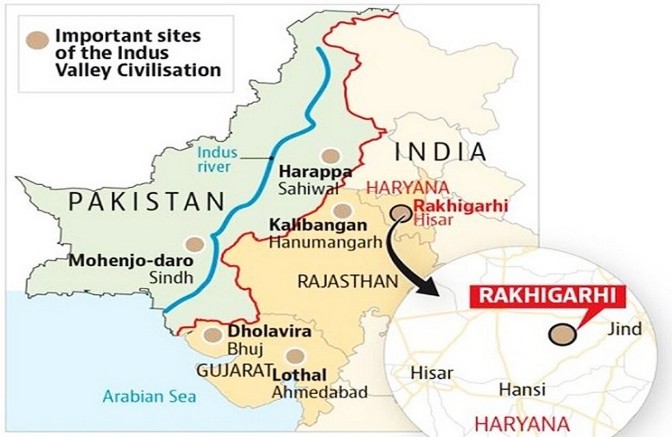
- 05 Mar 2025
In News:
President DroupadiMurmu recently visited Dholavira, a UNESCO World Heritage Site located in Gujarat, India. She expressed appreciation for the Archaeological Survey of India’s (ASI) meticulous conservation efforts to preserve this ancient site, despite its remote location.
Location and Significance:
Dholavira is situated on Khadir Bet Island in the Great Rann of Kutch, Gujarat, within the Kutch Desert Wildlife Sanctuary and along the Tropic of Cancer. It was inscribed as a UNESCO World Heritage Site in 2021 due to its remarkable contributions to understanding the Harappan (Indus Valley) Civilization, one of the world's earliest urban cultures.
Key Features:
- City Layout and Construction:Dholavira is distinct from other Harappan sites in its layout, divided into three main sections: the Citadel, the Middle Town, and the Lower Town. The city is unique for its extensive use of stone in construction, unlike the brick-built cities of Harappa and Mohenjo-Daro. It also featured multi-purpose grounds, including a marketplace and a festive area.
- Water Conservation System:The site is renowned for its sophisticated water management techniques, which included 16 massive reservoirs, stepwells, check dams, and underground water storage systems. This advanced water conservation system earned it the name "Jal Durga" or "Water Fort." The engineering skills of the Harappans, especially in water harvesting, were far ahead of their time and continue to be admired today.
- Trade and Cultural Exchange:Dholavira was a significant trade hub, connected to regions such as Magan (modern Oman) and Mesopotamia. It is believed to have been involved in the trade of copper, jewelry, and timber. The site yielded a variety of artifacts, including terracotta pottery, seals, ornaments, and evidence of metallurgy, along with inscriptions in the Indus Valley script.
- Archaeological Discoveries:The site was first discovered by Jagat Pati Joshi in 1967 and excavated systematically between 1990 and 2005 under Dr. Ravindra Singh Bisht of ASI. It is the fifth-largest site of the Indus Valley Civilization and provides evidence of habitation over seven cultural phases from 3000 to 1500 BCE. Notably, no human remains have been found, but the presence of architectural structures, artifacts, and inscriptions gives a rich understanding of the ancient civilization's culture and economy.
- Technological Advancements:The President, during her visit, highlighted the technological advancements of the Harappans, particularly in urban planning and water management, which were superior in many respects to the technology of modern times.
Historical Context:
The Harappan Civilization, flourishing from around 3300 to 1300 BCE along the Indus River, was an urban society known for its advanced city planning, sanitation systems, and trade networks. Dholavira stands out as a crucial link in understanding the broader scope of this civilization. Other key Harappan sites include Harappa, Mohenjo-Daro, Banawali, Lothal, and Ropar.
Exercise Desert Hunt 2025
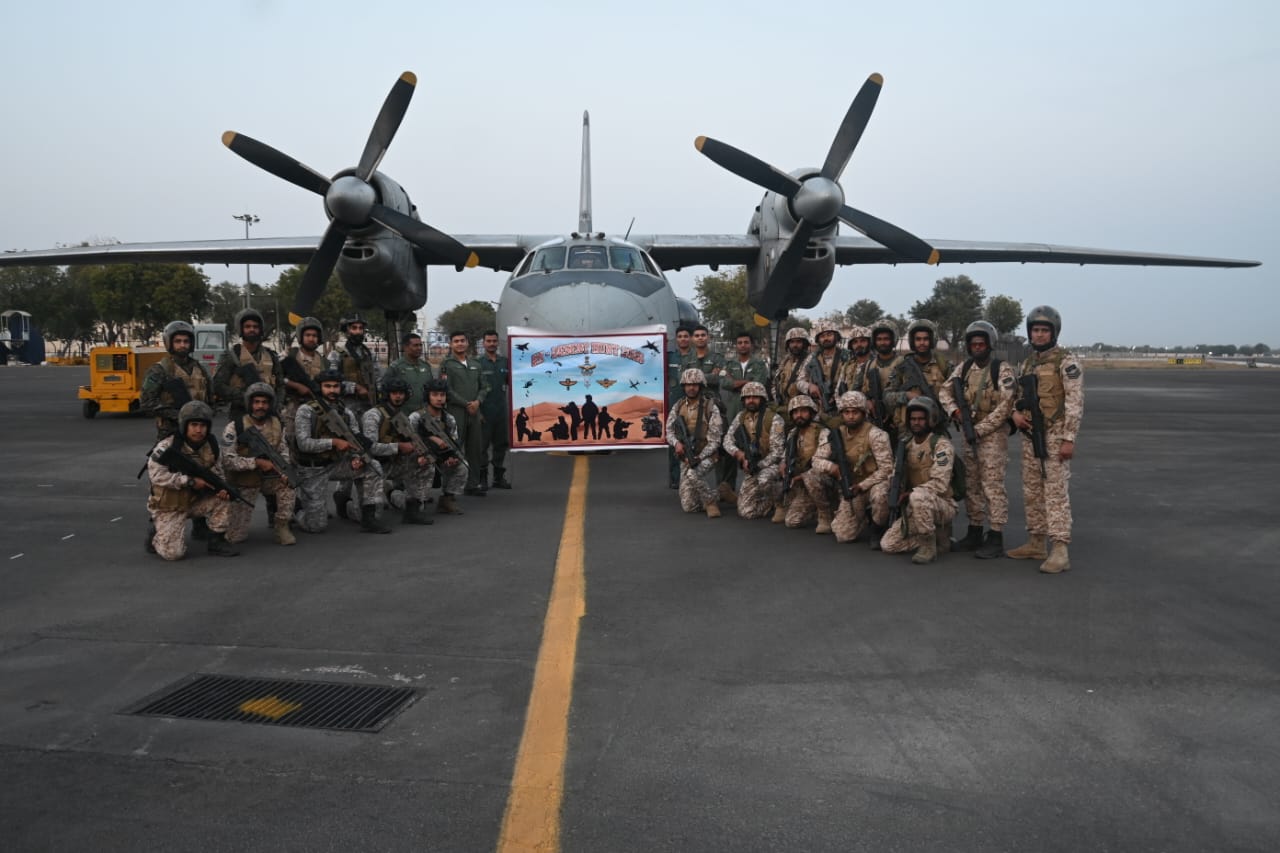
- 04 Mar 2025
In News:
Exercise Desert Hunt 2025 was a high-intensity Tri-Service Special Forces military drill conducted by the Indian Air Force at Air Force Station Jodhpur, Rajasthan, from 24 to 28 February 2025.
Participating Forces
- Indian Army: Para (Special Forces)
- Indian Navy: Marine Commandos (MARCOS)
- Indian Air Force: Garud Special Forces
Objective
- To enhance interoperability, coordination, and operational synergy among the Special Forces of the three services.
- To ensure swift and effective responses to emerging security threats through joint operations.
Key Activities
- Airborne insertion and combat free-fall
- Precision strikes and counter-terrorism drills
- Hostage rescue operations
- Urban warfare simulations
- Validation of joint operational doctrines under realistic combat conditions
Significance
- Strengthens tri-service integration and fosters inter-service cooperation.
- Reinforces the commitment of the Indian Armed Forces to national security.
- Provides a platform for doctrinal validation and operational readiness.
HeroRATS and the Future of Tuberculosis Detection
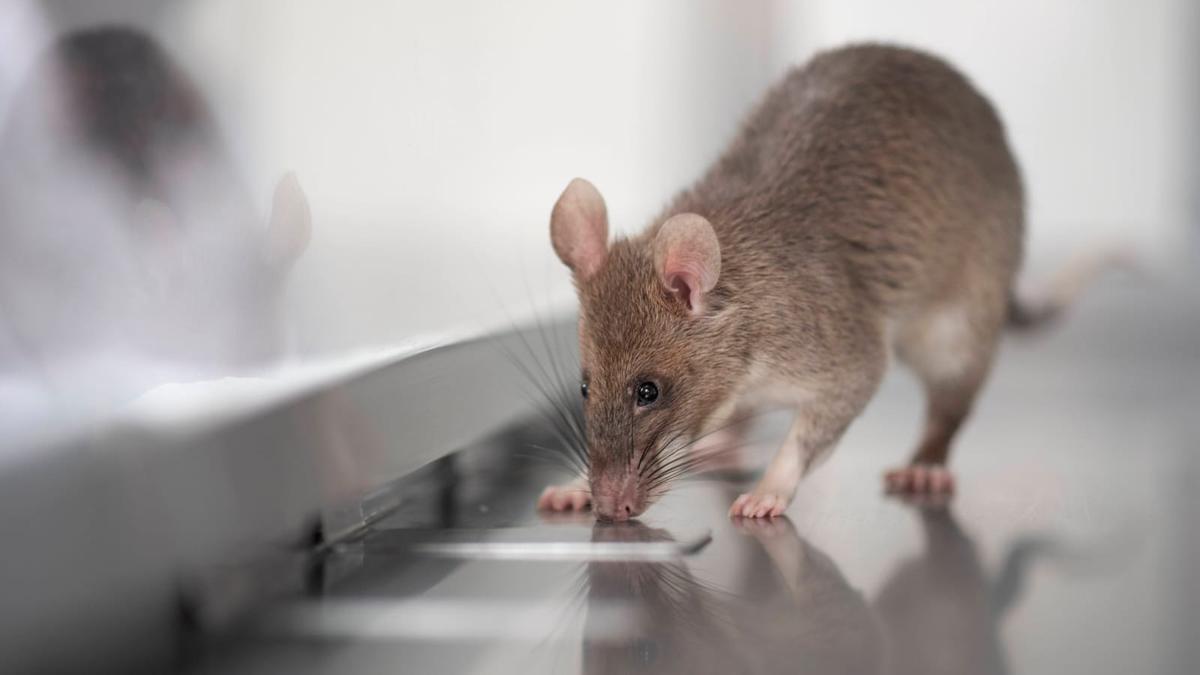
- 04 Mar 2025
In News:
Tuberculosis (TB) remains one of the deadliest infectious diseases globally, with over 10 million new cases annually. India carries the highest TB burden, accounting for about 28% of global cases and recording nearly five lakh TB-related deaths each year—roughly one death every minute. Despite progress under the National Tuberculosis Elimination Programme (NTEP), which aims to eliminate TB by 2025 (ahead of the global 2030 target), early and accurate diagnosis remains a major hurdle, especially in children, low bacillary load cases, and underserved regions.
A Novel Solution: HeroRATS in TB Diagnosis
In a groundbreaking initiative, APOPO, a Tanzanian non-profit, has trained African giant pouched rats (HeroRATS) to detect TB by sniffing sputum samples. These rats have highly sensitive olfactory receptors, enabling them to detect TB cases that conventional diagnostics often miss.
Key Features of HeroRATS:
- Can screen 100 samples in 20 minutes, compared to 3–4 days by sputum-smear microscopy.
- Trained through operant conditioning, rewarded with food after accurate detection.
- Detect twice as many TB cases in children and six times more in low-bacillary-load patients than traditional methods.
- Confirmatory tests: Ziehl-Neelsen and fluorescent microscopy.
A 2023 study involving over 35,000 patients in Tanzania showed that HeroRATS detected over 2,000 additional TB cases, particularly among smear- or Xpert-negative patients. The method offers a fast, cost-effective, and scalable secondary diagnostic tool.
Relevance to India
With India facing challenges like poor health infrastructure in rural areas and reluctance to seek re-testing after a negative result, integrating HeroRATS into the NTEP could boost case detection. Experts suggest a phased rollout in high-burden states like Maharashtra and West Bengal. The Central TB Division’s collaboration with APOPO could help accelerate TB diagnosis and reduce transmission.
About Tuberculosis
- Cause: Mycobacterium tuberculosis, mainly affects the lungs, spread via airborne droplets.
- Prevalence: One-fourth of the global population is infected; only 5–10% show symptoms.
- Risk Factors: Weakened immunity, malnutrition, diabetes, tobacco and alcohol use.
- Diagnosis: WHO recommends rapid molecular tests like Xpert MTB/RIF Ultra.
- Prevention: BCG vaccine at birth.
- Treatment: Standard 4–6 month antibiotic course.
- Drug-Resistant TB:
- MDR-TB: Resistant to isoniazid and rifampicin.
- XDR-TB: Resistant to multiple drug classes, harder to treat.
- TB-HIV Link: HIV patients are 16 times more likely to develop TB.
Bio-detection Beyond Rats: Macrosmatic Species in Medicine
Several animals with heightened olfactory senses are being used in disease detection:
- Dogs: Detect Parkinson’s, cancers, and diabetes using their 125–300 million olfactory receptors and Jacobson’s organ.
- Ants: Trained to detect cancer cells within three days using chemical signals.
- Honeybees: Can differentiate between types of lung cancer with 88% accuracy using synthetic biomarkers.
All-India Consumer Price Index for Agricultural and Rural Labourers
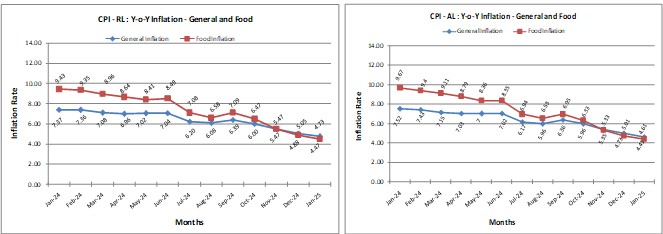
- 02 Mar 2025
In News:
The Labour Bureau, Ministry of Labour& Employment released the All-India Consumer Price Index (CPI) for Agricultural Labourers (CPI-AL) and Rural Labourers (CPI-RL) for January 2025.
Key Highlights:
- Inflation Rates:
- CPI-AL: 4.61%
- CPI-RL: 4.73%
- Marked a decline from January 2024, when rates were 7.52% (CPI-AL) and 7.37% (CPI-RL).
- Also lower than December 2024: 5.01% (CPI-AL) and 5.05% (CPI-RL), indicating easing rural inflation.
- Index Levels:
- CPI-AL: 1316 (down by 4 points from 1320 in December 2024)
- CPI-RL: 1328 (down by 3 points from 1331 in December 2024)
Group-wise Index Comparison (Dec 2024 vs Jan 2025):
Group CPI-AL (Dec → Jan) CPI-RL (Dec → Jan)
General Index 1320 → 1316 1331 → 1328
Food 1262 → 1255 1269 → 1261
Pan, Supari, etc. 2093 → 2103 2100 → 2111
Fuel & Light 1382 → 1390 1372 → 1380
Clothing, Bedding, Footwear 1329 → 1332 1392 → 1396
Miscellaneous 1376 → 1385 1377 → 1385
About CPI-AL and CPI-RL:
- CPI-AL: Measures cost-of-living changes for agricultural labourers; used for revising minimum wages in agriculture.
- CPI-RL: Captures cost-of-living changes for rural labourers (includes CPI-AL as a subset).
- Compiled monthly for 20 states and at the All-India level.
- Base Year: 1986–87=100 (used to measure price change over time).
Significance:
- Declining CPI reflects lower rural price pressure, beneficial for wage policy formulation, poverty analysis, and rural development planning.
Ultra-Conserved Elements (UCEs)
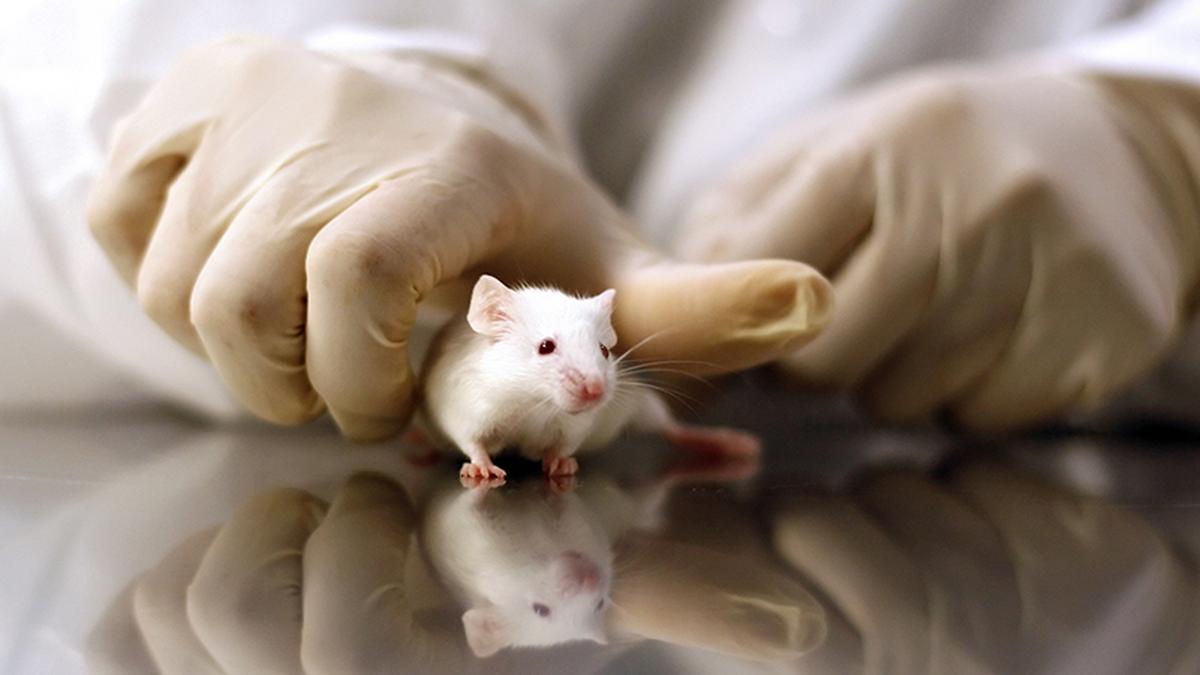
- 02 Mar 2025
In News:
A recent study on the Tra2b gene in mice has revealed a potential reason why certain segments of the genome called Ultra-Conserved Elements (UCEs) have remained unchanged for over 80 million years across species like humans, mice, rats, chickens, and even fish.
What are Ultra-Conserved Elements (UCEs)?
- Definition:DNA sequences at least 200 base pairs long that have remained perfectly identical across diverse species for tens of millions of years.
- Number in Human Genome:Around 500 UCEs have been identified in the human genome.
- Location:Found in both coding regions (genes) and non-coding regulatory regions like enhancers and silencers.
- Species Overlap:Identical UCEs are shared by humans, mice, rats, chickens, and fish, reflecting their evolutionary conservation.
Key Findings from the Tra2b Gene Study
- Research Insight:A UCE embedded in the first intron of the Tra2b gene acts as a “poison exon” to regulate production of the Tra2β protein, which is involved in RNA splicing.
- Mechanism:
- When Tra2β levels rise, the UCE is included as an extra exon in the mRNA.
- This exon contains multiple stop codons, halting protein synthesis.
- The mRNA is then degraded, preventing excess Tra2β protein.
- Experimental Result:
- Deleting this UCE in mouse sperm-producing cells led to overproduction of Tra2β, causing cell death and infertility.
- This implies that any mutation in the UCE that disrupts its function would lead to infertility and thus prevent its transmission, explaining its evolutionary stability.
Significance of UCEs
- Evolutionary Importance:Their intolerance to mutation suggests they are critical for basic survival and reproductive success.
- Functional Role:
- Do not typically code for proteins.
- Regulate gene expression, often during early development, fertility, and immune response.
- Act as enhancers, silencers, or splice regulators (as in the case of poison exons).
- Medical Relevance:
- Help understand gene regulation and disease mechanisms.
- Their conservation across species makes them valuable for comparative genomics and biomedical research.
- Mice are used as model organisms due to ~85% genetic similarity with humans.
One Nation-One Port Initiative
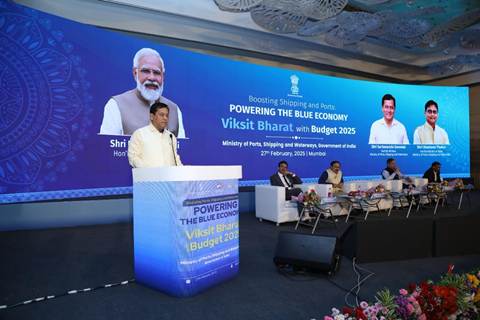
- 02 Mar 2025
In News:
The Ministry of Ports, Shipping and Waterways (MoPSW) has launched the ‘One Nation, One Port Process (ONOP)’, a transformative initiative aimed at standardizing port operations across India to improve efficiency, reduce costs, and bolster India’s position in global trade. This move aligns with PM Gati Shakti, the National Logistics Policy, and India’s ambition to become a leading maritime and logistics hub under Viksit Bharat@2047.
Key Components of the Maritime Reform Package:
1. One Nation, One Port Process (ONOP):
- Seeks uniform documentation and standardized customs procedures across all Indian ports.
- Reduced container operation documents by 33% (from 143 to 96) and bulk cargo documentation by 29% (from 150 to 106).
- Aims to eliminate procedural inconsistencies, boost ease of doing business, and cut logistics delays.
2. Sagar Ankalan – Logistics Port Performance Index (LPPI):
- Evaluates performance of major and non-major ports under Bulk (Dry & Liquid) and Container categories.
- Assesses indicators like cargo handling, turnaround time, berth idle time, and container dwell time.
- Encourages data-driven port benchmarking and fosters transparency in maritime logistics.
- Supports India’s improvement in the World Bank’s LPI (International Shipments) – from rank 44 to 22 in 2023.
3. MAITRI (Master Application for International Trade and Regulatory Interface):
- A digital platform using AI and Blockchain to automate trade clearances and enable Virtual Trade Corridors (VTC).
- Initial linkage with UAE, to expand towards BIMSTEC and ASEAN nations.
- Reduces bureaucratic redundancies, improves supply chain integration, and enhances trade resilience.
4. Bharat Ports Global Consortium:
- A collaborative body combining IPGL (operations), SDCL (finance), and IPRCL (infrastructure).
- Focuses on port development, global trade connectivity, and supporting the Make in India initiative.
- Strengthens India's presence in global logistics networks.
5. Financial and Policy Support:
- Launch of a ?25,000 crore Maritime Development Fund to facilitate long-term port and shipping investments.
- Shipbuilding Financial Assistance Policy 2.0 to aid Indian shipyards in competing globally.
- Customs duty exemptions on shipbuilding inputs extended for 10 years.
- Inclusion of large ships in the Infrastructure Harmonised Master List (HML) to ease access to funding.
6. Sustainability and Green Shipping:
- Launch of the National Centre of Excellence in Green Port and Shipping (NCoEGPS).
- Focus on carbon footprint reduction, cleaner fuels, and eco-friendly port operations.
7. Promotion and Maritime Diplomacy:
- Announcement of India Maritime Week (Oct 27–31, 2025) in Mumbai to showcase India’s Maritime Virasat (Heritage) and Vikaas (Development).
- Will host the 4th Global Maritime India Summit and the 2nd Sagarmanthan Dialogue, with representation from 100 countries and over 1 lakh delegates.
Strategic Significance:
- Aligns with Atmanirbhar Bharat, Blue Economy, and India-Middle East-Europe Economic Corridor (IMEEC).
- Boosts domestic manufacturing and export potential through better port infrastructure and trade facilitation.
- Reflects India’s push toward a digital, green, and globally competitive maritime sector.
Make the World Wear Khadi Campaign
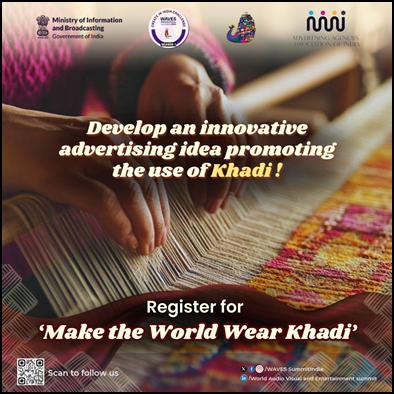
- 01 Mar 2025
In News:
The “Make the World Wear Khadi” campaign is a strategic initiative launched to globalize Khadi, India’s iconic hand-spun fabric, by integrating it with contemporary fashion trends. It is part of the inaugural World Audio Visual & Entertainment Summit (WAVES), scheduled from 1–4 May 2025at theJio World Convention Centre, Mumbai.
Key Highlights:
Organizers
- Advertising Agencies Association of India (AAAI)
- Ministry of Information and Broadcasting, Government of India
Objectives
- Elevate Khadi as a global, aspirational brand.
- Celebrate and modernize India's textile heritage.
- Engage creative professionals in branding and marketing of Khadi through various media.
- Showcase India’s soft power in the global Media & Entertainment (M&E) space.
Campaign Highlights
- Part of the broader Create in India Challenges under WAVES.
- Participants: Open to advertising professionals and freelancers globally.
- Format: Creative entries in digital, print, video, and experiential marketing.
- Total Registrations for Create in India Challenges: 73,000+
- Registrations for Khadi Challenge (as of Feb 15, 2025): 112
Khadi – Key Facts
- What is Khadi?
- A traditional Indian fabric made from hand-spun and hand-woven cotton, silk, or wool.
- Historical Significance:
- Promoted by Mahatma Gandhi during the freedom movement as a symbol of swadeshi, self-reliance, and economic independence.
- Key Characteristics:
- Hand-spun using a charkha (spinning wheel).
- Woven on traditional looms.
- Eco-friendly and sustainable, made from natural fibers.
- Supports rural employment and cottage industries.
WAVES Summit 2025 – Snapshot
- A flagship Media & Entertainment event with a hub-and-spoke model.
- Four thematic pillars:
- Broadcasting & Infotainment
- AVGC-XR (Animation, VFX, Gaming, Comics, Extended Reality)
- Digital Media & Innovation
- Films
- The Khadi campaign falls under the Broadcasting & Infotainment category.
Plastic Parks in India
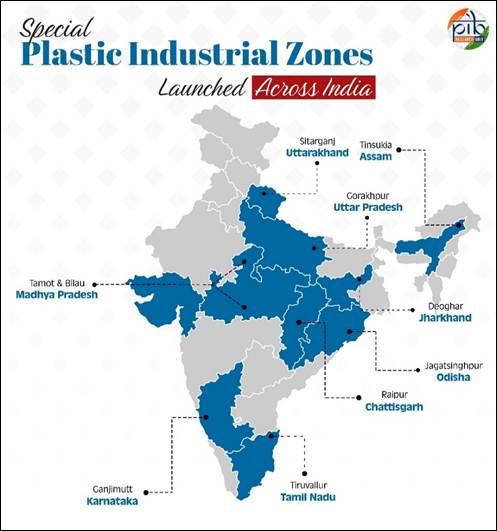
- 01 Mar 2025
In News:
The Department of Chemicals and Petro-Chemicals is implementing the Scheme for Setting up of Plastic Parks under the umbrella scheme of New Scheme of Petrochemicals, to support setting up need-based Plastic Parks, with requisite state-of-the-art infrastructure, enabling common facilities through cluster development approach, to consolidate the capacities of the domestic downstream plastic processing industry.
What is a Plastic Park?
- A Plastic Park is a dedicated industrial zone for plastic-related industries.
- Aims to synergize capacities of the plastic processing sector and promote investment, production, export, and employment.
- Encourages sustainable development through waste management and recycling.
Plastic Parks Scheme
- Implemented by the Department of Chemicals and Petro-Chemicals under the New Scheme of Petrochemicals.
- Financial Support: 50% of project cost, up to ?40 crore per park.
- Focus: Common infrastructure, cluster development, employment generation, and environmental sustainability.
Plastic Parks Approved (as of April 2025):
Location State Year Approved Grant Sanctioned (? crore) Amount Released (? crore)
Tamot Madhya Pradesh 2013 40.00 36.00
Jagatsinghpur Odisha 2013 40.00 36.00
Tinsukia Assam 2014 40.00 35.73
Bilaua Madhya Pradesh 2018 34.36 30.92
Deoghar Jharkhand 2018 33.67 30.30
Tiruvallur Tamil Nadu 2019 40.00 22.00
Sitarganj Uttarakhand 2020 33.93 30.51
Raipur Chhattisgarh 2021 21.04 11.57
Ganjimutt Karnataka 2022 31.38 6.28
Gorakhpur Uttar Pradesh 2022 34.79 19.13
Objectives
- Boost competitiveness, polymer absorption, and value addition.
- Support R&D-led growth and enhance exports.
- Promote eco-friendly practices like plastic recycling, effluent treatment, and hazardous waste management.
- Encourage cluster-based industrial growth.
Process of Setting up
- States submit proposals → In-principle approval by Scheme Steering Committee → Submission of DPR → Final approval.
- Implementation via Special Purpose Vehicles (SPVs) formed by states.
Other Government Measures
13 Centres of Excellence (CoEs) established at premier institutions (IITs, CSIR labs, CIPET) for:
- Sustainable polymers
- Bio-engineered polymer systems
- Advanced polymeric materials
- Wastewater management in petrochemical industries
Skill Development:
- CIPET offers short- and long-term training in plastic processing technology.
Sustainability Measures
- Extended Producer Responsibility (EPR) mandates recycling targets, use of recycled content.
- Hazardous Waste Management Rules enforce safe disposal practices.
- Ban on certain single-use plastics.
- Promotion of circular economy and biodegradable alternatives.
- Active engagement with WTO, UNEP, ISO for global compliance.
India in Global Plastic Trade
- 12th largest plastic exporter globally (World Bank, 2022).
- Exports increased from USD 8.2 million (2014) to USD 27 million (2022).
Prelims Facts to Remember
- Scheme launched under Department of Chemicals and Petrochemicals.
- Max central grant per park = ?40 crore.
- Plastic Park = cluster-based industrial zone for plastic processing industries.
- Gorakhpur (UP) &Ganjimutt (Karnataka) approved in 2022.
- India is actively integrating sustainability and innovation in the plastic sector.
National Science Day 2025
- 01 Mar 2025
In News:
National Science Day to be celebrated with theme ‘Empowering Indian Youth for Global Leadership in Science & Innovation for Viksit Bharat’.
Key Details:
- Observed On: February 28 annually
- Purpose: To commemorate the discovery of the Raman Effect by Sir C.V. Raman in 1928. The day highlights the importance of science and promotes scientific temper among the public.
- Theme 2025:“Empowering Indian Youth for Global Leadership in Science & Innovation for Viksit Bharat”
- This theme reflects the vision of building a developed India (Viksit Bharat) by nurturing youth-led scientific innovation and aligning with India’s S&T ambitions for 2047.
About Sir C.V. Raman and Raman Effect:
- Born: 7 November 1888, Tiruchirappalli, Tamil Nadu
- Major Contributions:
- Discovered the Raman Effect (1928), for which he received the Nobel Prize in Physics in 1930, becoming the first Asian Nobel Laureate in science.
- Founded: Indian Journal of Physics (1926), Indian Academy of Sciences (1934), Raman Research Institute (1948).
- First Indian Director of IISc, Bangalore (1933).
- Awarded Bharat Ratna in 1954.
Raman Effect:A phenomenon where light passing through a substance changes in wavelength due to interaction with molecular vibrations. This principle is used in Raman Spectroscopy, widely applied in material science, chemistry, forensics, and even nuclear waste analysis.
National Science Day – History & Celebrations:
- Established: 1986 by the Government of India
- First Observed: 1987
- Organisedby:National Council for Science & Technology Communication (NCSTC) under the Department of Science & Technology (DST).
- Celebrations include lectures, open labs, science fairs, and awareness drives across the country, especially for students.
Key Developments in Science & Technology (2024-25):
- Innovation & IP Rankings:
- 39th in Global Innovation Index 2024 (WIPO)
- 6th in Global IP Filings
- Major Initiatives:
- Anusandhan National Research Foundation (ANRF): Boosts R&D and supports innovation in EVs, materials, and emerging technologies.
- National Quantum Mission (NQM): ?6003.65 crore mission to advance quantum computing, communication, and sensing.
- National Supercomputing Mission (NSM):
- Deployed 33 supercomputers, capacity: 32 PetaFlops.
- Target: 77 PetaFlops using indigenous technology.
- Artificial Intelligence:
- BharatGen: India’s first multilingual, multimodal Large Language Model (LLM) for Generative AI.
- STEM Inclusivity:
- Programs like WISE-KIRAN support women in science.
- PM Early Career Research Grant nurtures young researchers.
- INSPIRE continues to attract school and college students to science careers.
- Geospatial & Climate Research:
- Expansion of spatial thinking programs in schools (116 schools across 7 states).
- Establishment of 4 Centres of Excellence for climate risk mapping to enhance disaster preparedness.
PRAKRITI 2025
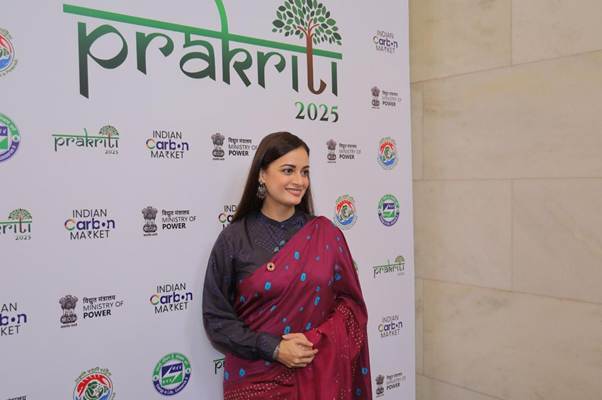
- 28 Feb 2025
In News:
- The International Conference on Carbon Markets – PRAKRITI 2025 was inaugurated by the Minister of Power and Housing and Urban Affairs.
- Organized by the Bureau of Energy Efficiency (BEE) under the Ministry of Power, the event served as a major platform for global dialogue on carbon markets, climate finance, and sustainability strategies.
Key Highlights:
PRAKRITI 2025 (Promoting Resilience, Awareness, Knowledge, and Resources for Integrating Transformational Initiatives) aimed to:
- Understand the functioning of Indian and global carbon markets.
- Discuss challenges, dynamics, and opportunities in carbon trading.
- Strengthen carbon credits, offset mechanisms, and compliance systems.
- Promote renewable energy, green innovations, and ecosystem-based interventions.
- Foster collaboration between governments, industries, and citizens.
Insights from PRAKRITI 2025
- Global Linkages:India’s carbon market will increasingly be influenced by global policies such as the European Union’s Carbon Border Adjustment Mechanism (CBAM), which imposes carbon pricing on imports like steel and aluminium. Indian industries must prepare to maintain competitiveness.
- Carbon Market Mechanisms:
- Under Article 6 of the Paris Agreement, carbon trading allows entities to buy carbon credits to offset emissions.
- Carbon credit = reduction of 1 metric ton of CO? or equivalent GHGs.
- India’s Progress:
- India ranks second globally in Clean Development Mechanism (CDM) project registrations.
- The Perform, Achieve and Trade (PAT) scheme, regulated by BEE, has saved over 106 million tonnes of CO? since 2015.
- Development of a domestic carbon market is a priority to align with global standards and leverage international finance.
- Challenges Highlighted:
- Need for robust Monitoring, Reporting, and Verification (MRV) frameworks.
- Ensuring fair benefit distribution among stakeholders.
- Developing policies tailored to India’s economic and social realities.
- Increasing private sector engagement and incentivizing renewable energy developers.
Bureau of Energy Efficiency (BEE)
- Established: 1 March 2002 under the Energy Conservation Act, 2001.
- Mandate: Develop policies and programmes to promote energy efficiency, coordinate with stakeholders, and promote self-regulation within market principles to reduce India's energy intensity.
- Role in Carbon Market: BEE is the nodal agency regulating India’s carbon trading schemes and energy conservation initiatives.
First Regional Dialogue and ESIC Foundation Day
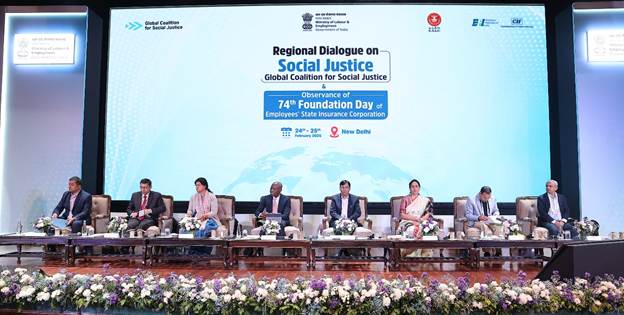
- 27 Feb 2025
In News:
- India hosted the first-ever Regional Dialogue on Social Justice under the Global Coalition for Social Justice in New Delhi (Feb 2025).
- Event coincided with the 74th Foundation Day of Employees’ State Insurance Corporation (ESIC), established in 1952.
Global Coalition for Social Justice (GCSJ)
- Launched by ILO in 2023, GCSJ aims to address social justice deficits globally, aligned with SDGs.
- Membership: Open to governments, businesses, academia; India is a key member.
- Promotes inclusive, sustainable development, responsible business conduct, and labor rights.
- India leads the Asia-Pacific Coordinating Group and spearheads responsible business initiatives.
India’s Achievements in Social Protection
- As per ILO’s World Social Protection Report 2024-26:
- India’s social protection coverage (excluding health) has doubled from 24.4% (2021) to 48.8% (2024).
- India contributed 5% of the global increase in social protection coverage.
- Employability of Indian graduates rose from 33.95% (2013) to 54.81% (2024).
Key Government Initiatives
- e-Shram Mobile App launched to improve access to welfare schemes, curated job listings, and multilingual support.
- Focus on extending coverage to:
- Informal sector (unorganized, gig, platform, construction, agricultural workers).
- Women and youth, with targets like 70% female workforce participation by 2047.
- Emphasis on AI and the Future of Work, living wages, and Global Value Chains through the Decent Work Country Programme.
Constitutional Provisions Supporting Social Justice
Provision
Focus
Preamble
Social, economic, and political justice
Art. 23 & 24
Prohibit trafficking, forced and child labour
Art. 38
Reduce social and economic inequalities
Art. 39 & 39A
Fair wages, legal aid, livelihood opportunities
Art. 46
Promote education and welfare of weaker sections
About Employees’ State Insurance Corporation (ESIC)
- Statutory body under the ESI Act, 1948, Ministry of Labour& Employment.
- Eligibility: Employees earning ≤ ?21,000/month.
- Coverage: Establishments with ≥10 employees (or <10 in hazardous sectors).
- Benefits: Medical care, maternity, sickness, disability, dependent benefits, and unemployment allowance.
Significance of the Dialogue
- Platform for global best practices exchange from countries like Germany, Brazil, Australia, Philippines, and Namibia.
- Showcased India’s leadership in technology-driven social security, gender-responsive policies, and youth skilling.
- Bharatiya Mazdoor Sangh (BMS) and CII-EFI signed a Joint Statement on Responsible Business Conduct.
- Publications released include:
- Best Practices on Responsible Business Conduct
- Compendium on Social Protection in India
- Social Security for Informal Workers
Three-Language Formula and NEP 2020
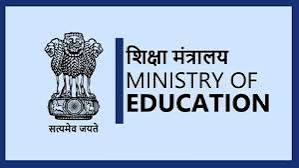
- 27 Feb 2025
In News:
The Three-Language Formula (TLF) under the National Education Policy (NEP) 2020 has sparked controversy, particularly with Tamil Nadu opposing its implementation. The Union government’s withholding of ?573 crore under the Samagra Shiksha Abhiyan (SSA) for non-compliance has intensified the Centre-State standoff.
What is the Three-Language Formula?
- NEP 2020 mandates students learn three languages, of which at least two must be Indian languages.
- States, schools, and students have flexibility to choose the languages, with no imposition from the Centre.
- The medium of instruction should be the home language, mother tongue, or regional language at least until Grade 5, preferably till Grade 8 and beyond.
- Foreign languages like French, German, and Japanese can be offered at the secondary level.
Historical Background:
- Kothari Commission (1964–66) proposed the Three-Language Formula to promote national unity and linguistic diversity.
- Formally adopted in the NPE 1968 under PM Indira Gandhi, reaffirmed in 1986 (Rajiv Gandhi), and revised in 1992 (Narasimha Rao).
- Article 351 of the Constitution mandates the Union to promote the spread of Hindi.
- Tamil Nadu has historically rejected Hindi imposition, favoring a two-language policy (Tamil and English) since CM C.N. Annadurai’s tenure.
Benefits of the Three-Language Formula (UNESCO-backed):
- Improved Learning:
- Multilingual students show better cognitive development and academic performance.
- Education in the mother tongue improves comprehension and parental engagement.
- Social Inclusion:
- Helps include marginalized communities and preserve indigenous languages.
- Promotes unity in diversity and national integration.
- Economic & Environmental Gains:
- Preserves traditional ecological knowledge.
- Example: Switzerland attributes 10% of its GDP to its multilingual heritage.
Challenges and Criticisms:
- Politicization: Language policies can fuel regionalism and identity politics.
- Educational Burden: Students, especially from monolingual or low-literacy households, may struggle with an extra language.
- Infrastructure Gaps: There’s a shortage of trained language teachers.
- Diverse States: Linguistically complex states like Nagaland may face logistical issues.
- Technological Alternatives: Tools like AI translators reduce the need for multilingual proficiency.
Way Forward:
- Focus on quality of education before adding languages.
- Promote cooperative federalism—respecting state autonomy while aligning with NEP goals.
- UNESCO-aligned implementation:
- Use sociolinguistic data for planning.
- Develop learning materials in regional languages.
- Train bilingual teachers.
- Encourage community participation in language education.
Ancient Tea Horse Road
- 27 Feb 2025
In News:
The Tea Horse Road, also known as the Southern Silk Road, was an ancient trade network connecting China, Tibet, and India. It played a pivotal role in economic, cultural, and strategic exchanges between these regions for over a millennium. Though less popular than the Silk Road, it was vital for the tea-horse trade and strategic logistics.
Geography and Route
- Length: Over 2,000 km
- Route Type: Not a single path, but a network of caravan routes
- Regions Covered:
- Originated in Southwest China (Yunnan & Sichuan)
- Passed through Tibet, Nepal, Bhutan
- Extended into India via Himalayan passes, reaching Kalimpong and Kolkata
- Key Nodes:
- Dali & Lijiang (Yunnan): Tea production centers
- Lhasa (Tibet): Central convergence point for trade
- Kalimpong& Kolkata (India): Export destinations to Europe and Asia
- Elevation: Reached up to 10,000 feet in the Himalayas
- Terrain: Extremely challenging — cold, steep, and remote
Historical Evolution
- Tang Dynasty (618–907 CE): Early mentions by Buddhist monk Yijing; trade included sugar, textiles, rice noodles, gold, saffron, and medicinal herbs
- Song Dynasty (960–1279 CE): Institutionalized the tea-for-horse exchange; established official markets for regulated trade
- Mongol Period (13th century): Heightened need for horses for military use against nomadic tribes
- Qing Dynasty's Fall (1912): Political instability weakened trade, but the road was used for global tea exports
- World War II: Gained renewed importance as a logistical route after Japanese blockade of China’s coastline
Tea and Horses – The Core Trade
- Tea: Essential in Tibetan climate; popularized due to practicality and possibly a royal dowry tradition
- Tibetan staple: Yak butter tea
- Pressed tea bricks used as currency in medieval Tibet
- Horses: Sourced from Tibet and Yunnan, vital for China’s cavalry
- Tibetan horses were prized for battles against Mongolian tribes
Decline and Modern Legacy
- Post-1949 (PRC Formation):
- Land reforms and modern infrastructure reduced reliance on traditional portering
- Mechanized transport replaced mule and porter-based systems
- Modern Times:
- Revival through tourism and heritage promotion
- Lijiang declared UNESCO World Heritage Site (1997) for its trade history and cultural legacy
Significance for India-China Relations
- Demonstrates centuries-old economic and cultural exchanges
- Reflects shared heritage through trade, Buddhism, and ethnic interactions
- Ambassador Xu Feihong recently invoked the Tea Horse Road to highlight historical Indo-China links, reinforcing its symbolic role in bilateral diplomacy
African-Asian Rural Development Organization (AARDO)
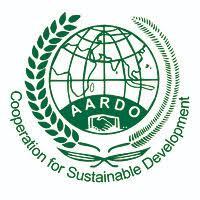
- 26 Feb 2025
In News:
The 21st AARDO Conference recently concluded in New Delhi, reaffirming the commitment to community-led rural development, local knowledge sharing, and South-South cooperation.
About AARDO
- Full Form: African-Asian Rural Development Organization
- Nature: Intergovernmental, autonomous organization
- Established:March 31, 1962
- Headquarters:New Delhi, India
- Origin:
- Conceptualized at the 1955 East Asian Rural Reconstruction Conference (Tokyo)
- Formalized after the 1961 Afro-Asian Conference on Rural Reconstruction (New Delhi)
- Permanent HQ established in 1966 in India
Membership
- Full Members:32 countries from Asia and Africa (e.g., India, Bangladesh, Egypt, Zambia, Malaysia)
- Associate Members:3 entities (e.g., Korea Rural Community Corporation, Agricultural Bank of Sudan)
- Eligibility: Open to Afro-Asian countries that are full or associate members of the UN or its specialized agencies focused on rural development
Observer Status with International Organizations
AARDO has observer status with:
- FAO – Food and Agriculture Organization
- IFAD – International Fund for Agricultural Development
- UNDP – United Nations Development Programme
- UNESCO – United Nations Educational, Scientific and Cultural Organization
- UNCTAD – United Nations Conference on Trade and Development
Objectives & Aims
- South-South Cooperation: Enhance technical and economic collaboration in rural development between Asia and Africa
- Sustainable Rural Development: Promote poverty alleviation, food security, and climate-resilient agriculture
- Capacity Building & Knowledge Sharing: Encourage exchange of best practices, innovations, and research
Functions
- Policy & Dialogue Platform: Facilitates discussions among member countries on rural development strategies
- Training & Capacity Building: Organizes international, regional, and national training programs to strengthen rural institutions
- Research & Action Studies: Initiates and disseminates research on shared challenges in agriculture and rural livelihoods
- Pilot Projects: Offers technical and financial assistance for pilot projects to serve as replicable models
- International Collaboration: Partners with UN agencies, regional bodies, and NGOs for integrated rural development
- Data Sharing: Provides members with disaggregated statistics and information for informed decision-making
Soliga Tribe and Tiger Conservation
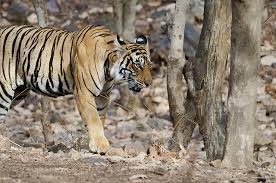
- 26 Feb 2025
In News:
In the 119th edition of Mann Ki Baat, Prime Minister Narendra Modi lauded the Soliga tribe of the BiligiriRanganathaswamy Temple (BRT) Tiger Reserve in Karnataka for their significant role in tiger conservation and sustainable forest practices.
Who are the Soligas?
- Location: Indigenous, forest-dwelling tribe residing primarily in Chamarajanagar district, Karnataka, and parts of Tamil Nadu, especially around Biligiri Rangana Hills and Male Mahadeshwara Hills.
- Meaning of the Name: "Soliga" translates to “children of bamboo”, symbolizing their deep ecological ties.
- Language: They speak Sholaga (a Dravidian language), along with Kannada and Tamil.
- Lifestyle:Soligas live in bamboo-and-mud huts, practice shifting cultivation, and depend on non-timber forest produce (NTFP) for sustenance.
- Diet & Livelihood:Honey is a staple in their diet; they extensively forage and harvest forest produce like amla, gooseberries, and medicinal herbs, leaving a portion for wildlife—a reflection of their conservation ethos.
Religious and Cultural Practices:
- Soligasworship wildlife, especially the tiger, locally called “DoddaNayi” (Great Dog). They have even built temples dedicated to tigers.
- Their belief system includes Hindu customs, animism, and naturism, highlighting their spiritual connection with nature.
- They produce eco-friendly artifacts like ‘jottai’ (leaf cups), showcasing sustainable craftsmanship.
Recognition of Forest Rights:
- In 2011, Soligas became the first tribal community in India to receive legal recognition of their forest rights within a tiger reserve, under the Forest Rights Act (FRA).
- This ruling allowed them to reside within the BRT Tiger Reserve and sustainably collect forest produce without displacing wildlife.
Role in Tiger Conservation:
- Soligas’ traditional knowledge of forest ecology helps them coexist peacefully with wildlife, minimizing human-animal conflict.
- They assist the Forest Department in fire prevention, wildlife tracking, and ecological management.
- Their cultural practices ensure minimal disturbance to wildlife. For instance, during harvest, they intentionally leave 25–33% of the produce in the forest for animals.
BiligiriRanganathaswamy Temple (BRT) Tiger Reserve:
- Location: Chamarajanagar district, Karnataka; lies at the confluence of the Western and Eastern Ghats, forming a critical wildlife corridor.
- Ecosystem: Rich in biodiversity with forest types including:
- Southern Tropical Evergreen
- Semi-Evergreen
- Moist Deciduous
- Flora:Axlewood, Rosewood, Terminalia spp., Indian Gooseberry, Ceylon Oak, Golden Shower Tree.
- Fauna: Tigers, Wild Dogs, Sloth Bears, Sambars, Bison, and endangered species like the Icthyophisghytinosus (Caecilian).
- Cultural Site: Named after Lord Rangaswamy, the reserve houses the Biligiri Temple atop mist-covered hills.
USD-INR Buy/Sell Swap Auction
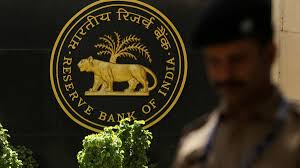
- 26 Feb 2025
In News:
The Reserve Bank of India (RBI) has announced its largest-ever USD-INR Buy/Sell Swap Auction worth $10 billionfor a tenor of three years. This strategic move is aimed at addressing the persistent liquidity deficit in the banking system and stabilizing the Rupee-Dollar exchange rate.
What is a USD-INR Buy/Sell Swap Auction?
A Dollar/Rupee Buy-Sell Swap Auction is a foreign exchange (forex) tool used by RBI to manage domestic liquidity and curb currency volatility. It is a two-leg transaction:
- First Leg (Buy Phase):Banks sell US dollars to the RBI and receive rupee liquidity.
- Reverse Leg (Sell Phase):RBI sells back the same amount of US dollars to banks at a future date (here, after 3 years), along with a swap premium.
Key Features of the February 2025 Swap Auction:
- Auction Size: USD 10 billion
- Tenor: 3 years (long-term)
- Rupee Liquidity Injected: Approx. ?86,000 crore
- Auction Date: 28 February 2025
- Spot Settlement Date: 4 March 2025
- Far-leg Settlement Date: 6 March 2028
- Reference Rate: Based on FBIL (Financial Benchmarks India Pvt Ltd) benchmark
Objectives and Benefits:
- Liquidity Management:
- Addresses durable liquidity needs; helps ease banking system deficit (estimated at ?1.7 lakh crore).
- Supports credit flow to businesses, aiding economic growth.
- Exchange Rate Stability:
- Reduces volatility in the USD/INR rate (expected to stabilize around ?86.30).
- Mitigates pressure from foreign fund outflows.
- Efficient Forex Reserve Utilization:
- Uses RBI’s reserves productively to manage monetary conditions.
- Enhances Policy Transmission:
- Aligns money market interest rates with RBI’s monetary policy stance.
- Supports Inflation Control:
- Infuses liquidity without directly adding to inflationary pressures.
Challenges and Limitations:
- Impact on Forex Reserves:Large-scale swaps temporarily tie up reserves.
- Global Dependencies:Effectiveness may be affected by global interest rate differentials, capital flows, and external shocks.
- Market Speculation Risks:Poor timing or execution could trigger speculative activity in the forex market.
- Temporary Measure:Swap auctions offer short- to medium-term relief; structural reforms are needed for long-term liquidity management.
Bharat Tech Triumph Program (TTP)
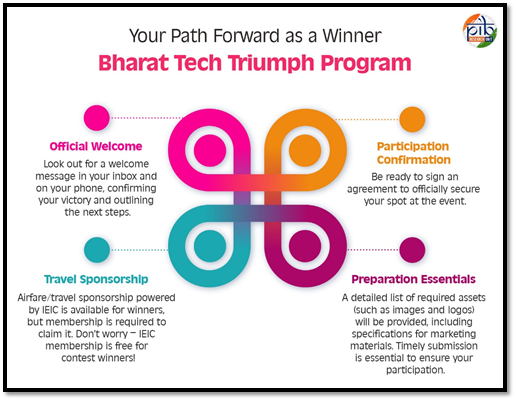
- 26 Feb 2025
In News:
Launched under the Create in India Challenge Season 1, the Bharat Tech Triumph Program (TTP) is a flagship initiative aimed at promoting India’s gaming and interactive entertainment ecosystem on the global stage.
Key Highlights
- Launch Year: 2025
- Ministry Involved: Ministry of Information and Broadcasting (MIB)
- Organizing Partner: Interactive Entertainment and Innovation Council (IEIC)
Objectives:
- Identify and showcase Indian gaming talent internationally.
- Support the growth of the gaming, animation, visual effects, and immersive technology (AR/VR/Metaverse) sectors.
- Boost the 'Create in India' initiative in the media and entertainment domain.
- Enable Indian developers and startups to create globally competitive digital products.
Program Features:
- Eligibility:
Open to developers, studios, startups, and tech companies with working prototypes in:- Game development
- Esports
- Business solutions for gaming ecosystem
- Selection Process:
- Game Submission
- Expert Evaluation – Based on product, pitch, and team viability
- Final Showcase – Winners selected by a jury
Global Exposure Platforms:
- Game Developers Conference (GDC) 2025
- Location: San Francisco
- Dates: March 17–21, 2025
- World Audio Visual Entertainment Summit (WAVES) 2025
- Location: Mumbai
- Dates: May 1–4, 2025
- Venue: Jio World Convention Centre &Jio World Gardens
- Focus Areas: Broadcasting, AVGC-XR, Digital Media, Innovation, and Films
Relevance of WAVES Summit:
- WAVES acts as a global convergence point for the Media & Entertainment (M&E) sector.
- AVGC-XR (Animation, Visual Effects, Gaming, Comics + AR/VR/Metaverse) is a central pillar, aligning with TTP’s goals.
Significance for India:
- Positions India as a global hub for innovation in digital entertainment.
- Supports Atmanirbhar Bharat in the tech and creative economy sectors.
- Encourages cross-border collaborations and export of Indian intellectual property in the gaming domain.
Biotechnology and Bioeconomy in North East India
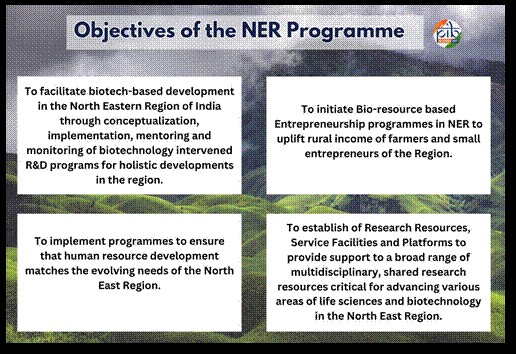
- 25 Feb 2025
In News:
The North Eastern Region (NER) of India, endowed with rich biodiversity, cultural heritage, and indigenous knowledge, is undergoing a transformation through biotechnology-led initiatives. The Department of Biotechnology (DBT) under the Ministry of Science and Technology is spearheading this change to harness the region’s biological resources for inclusive and sustainable development.
Biotechnology: Definition and Types
Biotechnology involves the use of biological systems or organisms to develop products and technologies that improve healthcare, agriculture, industry, and the environment.
Types of Biotechnology:
- Medical Biotechnology – Vaccines, gene therapy, diagnostics.
- Agricultural Biotechnology – Pest-resistant crops, high-yield seeds, and sustainable agriculture.
- Industrial Biotechnology – Biofuels, biodegradable plastics, enzyme-based processes.
- Environmental Biotechnology – Waste treatment, pollution control, and bioremediation.
Why North East India is Ideal for Biotech Development
- Biodiversity Hotspot: Home to 8,000+ plant species, including 850+ medicinal plants and agro-climatic diversity.
- Indigenous Knowledge: Rich traditional practices in herbal medicine and organic farming.
- Agri-Biotech Potential: Ideal for medicinal crops, essential oils, and organic produce.
- Industrial Opportunity: Scope for biofuel production, value-added food processing, and pharmaceutical industries.
Key DBT Programmes and Initiatives in the North East
- DBT North Eastern Programme
- Since 2010, 10% of DBT’s annual budget is dedicated to NER.
- Focus: R&D, education, infrastructure, entrepreneurship, and employment generation in biotechnology.
- Twinning R&D Programme (2010–11)
- Promotes collaborative biotech research between NER and national institutes.
- Over 65 institutional partnerships, supporting 650+ projects and benefiting ~2,500 researchers/students.
- Biotech Hubs Network (Since 2011)
- 126 Biotech Hubs established across universities and colleges.
- Phase II supports 54 hubs for focused research on local issues.
- BLiSS (Biotech Labs in Senior Secondary Schools): Started in 2014 to introduce biotechnology at the school level.
- Visiting Research Professorship (VRP) Programme:Launched in 2015 to utilize the expertise of top scientists for NER biotechnology development.
- Chemical Ecology Programme (2015): Collaborative training by NCBS, UAS, and IISc for Ph.D. scholars in the field of chemical ecology.
- Genomics Training Programme (2016):Conducted by DBT-NIBMG, Kalyani, for biomedical researchers in the region.
Agri-Biotech and Livelihood-Oriented Initiatives
- DBT-NECAB (Phase III): Enhancing biotech applications in agriculture.
- Citrus Research: Disease-free scion material of Khasi mandarin and sweet orange developed at IHT, Assam.
- Medicinal Crop Cultivation: 64.1 acres under Curcuma caesia and lemongrass cultivation; 649 farmers trained.
- Essential Oil Distillation: Facility set up in Mudoi village, Arunachal Pradesh, for revenue support.
- Value-Addition in Wild Fruits: Docynia indica (Assam apple) processed into products like jam, pickles, and candy.
Technology-Driven Achievements
- Bacterial Blight-Resistant Rice (Patkai): Developed by Assam Agricultural University; notified by CVRC.
- Brucellosis Detection Kit: Lateral Flow Assay (LFA) to detect anti-Brucella antibodies in livestock.
- Pig Disease Diagnosis Expert System (PDDES): Mobile app for livestock disease detection and management (available on Google Play Store).
Challenges in NER’s Biotech Growth
- Limited infrastructure for biotech R&D and production.
- High cost of commercial biotech projects.
- Shortage of trained professionals in advanced biotech fields.
- Vulnerability to climate change and poor connectivity with markets.
Way Forward
- Strengthen Infrastructure: Develop biotech parks, R&D centers, and incubators.
- Skill Development: Train local youth, researchers, and farmers.
- Public-Private Partnerships: Foster industrial collaboration for startups and innovation.
- Eco-friendly Technologies: Promote sustainable and low-impact biotech industries.
- Digital Integration: Use AI and data analytics for agricultural and healthcare biotech solutions.
Jhumoir Binandini (Jhumur) Dance
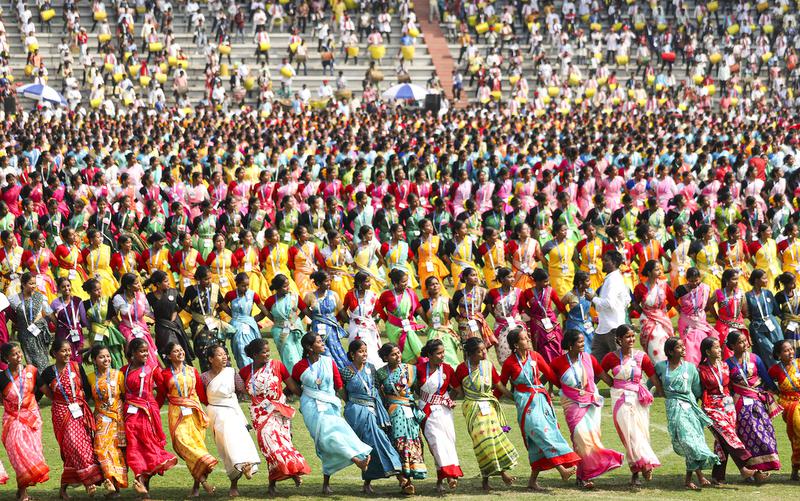
- 25 Feb 2025
In News:
The Prime Minister of India is set to attend the Jhumoir Binandini (Mega Jhumoir) 2025, a grand cultural event featuring around 8,600 performers showcasing the traditional Jhumur dance. This event highlights the rich cultural contributions of the tea tribe community of Assam.
About Jhumoir (Jhumur) Dance
- Jhumur, also known as Jhumoir, is a traditional folk dance performed predominantly by the Adivasi tea tribes of Assam.
- It is typically showcased during the harvest season, as well as on occasions like weddings and community festivals.
- The dance was introduced to Assam by the tea garden workers, who originally migrated from regions like Jharkhand, Odisha, Chhattisgarh, and West Bengal in the 19th century under British colonial rule.
Cultural Origins and Community
- The dance traces its roots to the Sadan ethnolinguistic group from the Chotanagpur plateau (present-day Jharkhand).
- The tea tribe community is a multi-ethnic group comprising descendants of migrant tea garden laborers.
- These communities have significantly shaped Assam’s socio-cultural landscape.
Performance Style and Attire
- Jhumur is performed in a circular formation, with dancers often holding each other's waists.
- The performance features rhythmic footwork, swaying movements, and energetic music.
- Women typically wear colorful sarees, often in red and white, while men dress in dhotis and kurtas.
- The musical accompaniment includes traditional instruments like the Madal, Dhol, Dhak, Taal (cymbals), and Flute.
Themes and Social Significance
- Jhumur songs blend liveliness with social commentary, often highlighting the struggles, exploitation, and migration experiences of the tea plantation workers.
- Major tea garden festivals where Jhumur is performed include Tushu Puja and Karam Puja, both celebrating the harvest.
- The dance fosters community bonding, promotes cultural pride, and represents Assam’s syncretic cultural heritage.
- It stands as a symbol of inclusivity, unity, and the resilience of the tea tribe community.
Technology Adoption Fund (TAF)
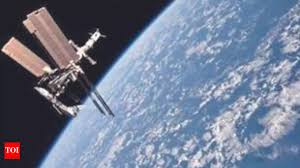
- 24 Feb 2025
In News:
IN-SPACe, India’s space sector regulator under the Department of Space, has launched the Technology Adoption Fund (TAF) to accelerate the commercialization of indigenous space technologies.
About TAF:
- Objective: To bridge the gap between early-stage innovation and market-ready space solutions developed by Indian startups, MSMEs, and industries.
- Goal: Reduce dependence on imported technologies and strengthen India's position in the global space sector.
Key Features:
- Financial Support:
- Startups/MSMEs: Up to 60% of project cost.
- Larger industries: Up to 40%.
- Funding cap: ?25 crore per project.
- Eligibility: Open to all non-government entities (NGEs) with commercially viable space innovations.
- Support Provided:
- Partial funding for development and commercialization.
- Technical mentoring and guidance.
- Focus Areas: Launch vehicles, satellites, space-based applications, and related services.
- Outcomes Expected:
- Development of new space products.
- Intellectual property generation.
- Enhanced production capabilities.
- Economic growth and job creation.
About IN-SPACe:
- Established: 2020
- Ministry: Department of Space
- Location: Ahmedabad, Gujarat
- Role: Single-window agency promoting private participation in India's space ecosystem.
- Functions:
- Authorizes and monitors private sector space activities.
- Facilitates access to ISRO infrastructure.
- Collaborates with academia, industry, and research bodies.
Significance:
- Encourages private innovation in space tech.
- Aligns with the larger vision of making India a hub for space entrepreneurship.
- Strengthens India’s self-reliance and competitiveness in global space technology.
Remission and the Supreme Court’s 2025 Ruling
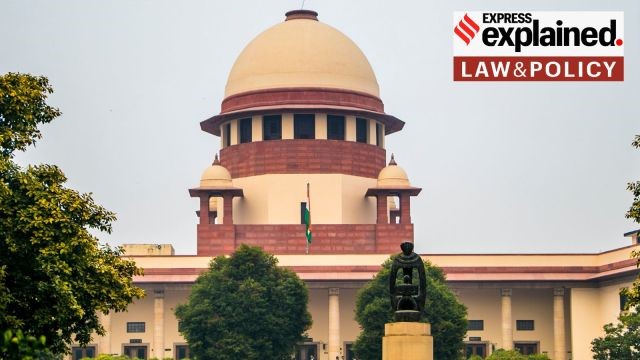
- 24 Feb 2025
In News:
Recently, the Supreme Court directed states with remission policies to consider the premature release of prisoners even if they don’t apply for remission beforehand.
What is Remission?
- Remission refers to the reduction of a convict's sentence by the government before the term is completed. It does not nullify the conviction, but shortens imprisonment.
- It is governed by:
- Section 473 of BNSS, 2023 (earlier Section 432 of CrPC, 1973) – empowers state governments to grant remission.
- Articles 72 and 161 of the Constitution – empower the President and Governors respectively to remit sentences.
- Section 475 of BNSS (earlier Section 433A CrPC) – restricts remission for life convicts found guilty of offences punishable by death until 14 years of imprisonment are completed.
Background: SC’s Suo Motu Intervention
- The Supreme Court in 2025, in the suomotu case In Re: Policy Strategy for Grant of Bail, altered the interpretation of remission rules to address prison overcrowding.
- The Court held that states must consider remission for eligible convicts even without a formal application, if a remission policy exists.
Shift in Judicial Interpretation
- Earlier rulings (Sangeet v. Haryana and Mohinder Singh v. Punjab, 2013) required a convict's application for remission.
- The 2025 judgment acknowledges that many state prison manuals already mandate prison authorities to initiate remission review.
- It recognized that failing to consider remission proactively could lead to arbitrary discrimination, violating Article 14 (Right to Equality).
Key Guidelines Issued by the Supreme Court
- Suo motu Remission:States must automatically assess eligibility under remission policies—no application needed.
- Mandatory Remission Policy:States without existing remission policies must formulate a comprehensive one within two months.
- Conditions for Remission Must Be:
- Reasonable, non-oppressive, and clearly defined.
- Based on factors like motive, criminal background, and public safety.
- Aimed at rehabilitation and prevention of recurrence.
- Safeguards Against Arbitrary Cancellation:
- Minor breaches shouldn’t lead to automatic cancellation.
- Notice and hearing must be given before cancellation.
- Transparency:
- Legal aid bodies must monitor remission cases.
- States to maintain real-time digital data on remission.
Significance and Implications
- The ruling helps streamline remission processes and could contribute to decongesting Indian prisons, which are heavily overcrowded.
- It ensures uniformity and fairness in the exercise of executive powers related to sentencing.
- Reinforces constitutional values of equality and procedural fairness for prisoners.
Note:
- Remission ≠ Pardon: Remission reduces sentence, doesn’t erase conviction.
- Articles 72 & 161: Concern constitutional remission powers (President & Governor).
- BNSS Sections 473 & 475: Replace CrPC Sections 432 & 433A, relevant for state remission powers.
- Suo motu action by SC: Taken to address systemic prison overcrowding.
- Article 14 invoked: To ensure equitable treatment of eligible prisoners.
Brazil Joins OPEC+
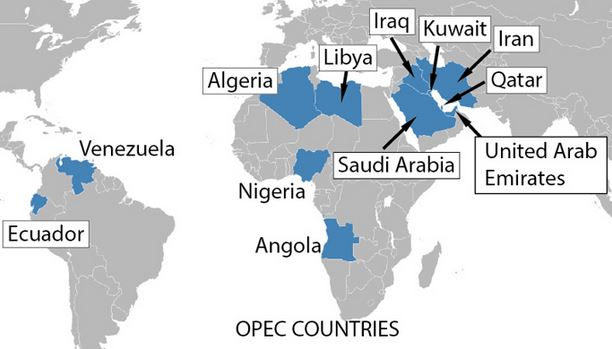
- 24 Feb 2025
Brazil Joins OPEC+
Source: Times of India
In News:
In February 2025, Brazil officially joined OPEC+, a coalition of oil-producing nations. This development comes ahead of Brazil hosting COP30, the annual UN climate summit.
About OPEC and OPEC+
- OPEC (Organization of the Petroleum Exporting Countries):
- A permanent intergovernmental organization established in 1960 at the Baghdad Conference.
- Aims to coordinate and unify petroleum policies to ensure stable prices and regular supply.
- Headquartered in Vienna, Austria.
- Current members include Saudi Arabia, Iran, Iraq, UAE, Nigeria, Libya, Algeria, and others.
- OPEC+ Formation:
- Created in 2016 to stabilize oil markets, particularly in response to rising U.S. shale oil production.
- Includes 12 OPEC members plus 11 non-OPEC countries like Russia, Kazakhstan, Mexico, and now Brazil (2025).
- Functions as a forum for strategic discussions but not all members are bound by production quotas.
Brazil’s Role and Strategic Significance
- Oil Production Status:
- Seventh-largest oil producer globally, with around 4.3 million barrels/day.
- In 2024, crude oil became Brazil’s top export, overtaking soybeans.
- OPEC+ Membership:
- Brazil joins the Charter of Cooperation but retains autonomy in production decisions.
- It seeks to influence global oil policy while protecting its energy interests.
- Balancing Act:
- While focusing on oil revenue for economic growth and energy transition funding, Brazil also pursues renewable energy through agencies like IRENA.
- This dual approach reflects an attempt to align development with environmental commitments.
Environmental Concerns and Criticism
- Brazil’s decision to expand oil exploration—especially near sensitive ecosystems like the Amazon—has drawn criticism.
- Environmentalists argue it contradicts climate goals, particularly as Brazil prepares to host COP30.
Note:
- OPEC+ is not a formal organization but a strategic alliance.
- Brazil is part of OPEC+ but is not bound by production quotas.
- OPEC’s headquarters is in Vienna, Austria (Austria is not an OPEC member).
- India is not a member of OPEC or OPEC+.
Ali Ai Ligang Festival and the Mising Tribe
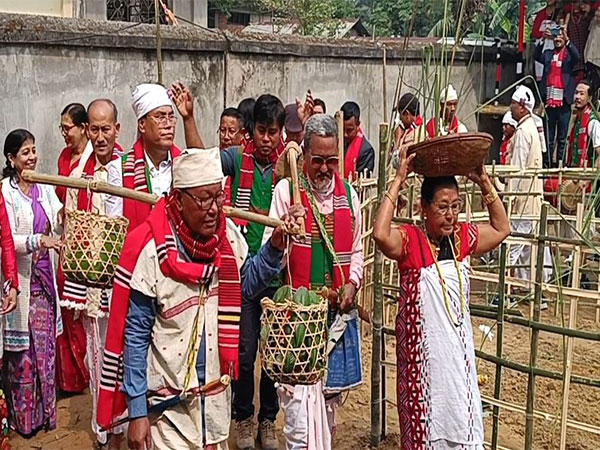
- 23 Feb 2025
In News:
The Mising tribe, Assam’s largest tribal community, celebrated Ali Ai Ligang in Shankarpur, Jorhat, on the first Wednesday of the Fagun month.
About the Mising Tribe
- Region: Indigenous tribe from Northeast India; primarily reside in Upper Assam and parts of Arunachal Pradesh, with some presence in South Tibet (China).
- Population: As per Census 2011, there are 6,80,424 Mising people in Assam.
- Ethnolinguistic Group: Belong to the Tani group, speak Tibeto-Burmese languages.
- Referred as: Called “Lhobhas” (southerners) by Tibetans.
- Unique Feature: Known as the only riparian tribe of Northeast India, with livelihoods closely linked to rivers like the Brahmaputra.
- Habitat: Construct stilt houses known as Chang Ghar to withstand seasonal floods.
Cultural and Religious Practices
- Religion: Practice Donyi-Poloism – worship of the Sun (Donyi) and the Moon (Polo) as supreme deities.
- Traditional Economy:
- Traditionally practiced Jhum (slash and burn) cultivation.
- Now settled cultivators skilled in wet paddy cultivation.
- Engage in fishing, weaving, and vegetable farming.
- Women are proficient in weaving traditional Mising textiles.
Ali Ai Ligang Festival
- Main Festival of the Mising community.
- Timing: Celebrated in February, on the first Wednesday of Fagun month (as per the Assamese calendar).
- Name Meaning:
- Ali – edible root
- Ai – seed
- Ligang – sowing
Signifies the beginning of the agricultural cycle – first sowing of seeds and roots.
Significance and Rituals
- Purpose: Marks the start of cultivation, invokes blessings from Donyi-Polo to protect crops from pests and natural calamities.
- Community Importance: Strengthens communal ties and preserves agrarian traditions.
- Ritual Practices:
- Morung Okum (Morung Ghar) – youth dormitory where offerings like Apong (rice beer), dry meat, and fish are made.
- Gumrag Dance – performed by men and women to signify joy, unity, and prosperity.
- Feast and Dress – Traditional Mising delicacies are prepared, and people wear colorful ethnic attire.
Modern Celebrations
- Originally village-based, now also celebrated in urban centers like Jorhat.
- Includes stage performances, cultural competitions, and large community gatherings.
- In Jorhat, it has been celebrated for the past 40 years, organized annually by Mising Agom Kebang (Mising apex literary and cultural body).
SWARBICA Executive Body Meeting 2025
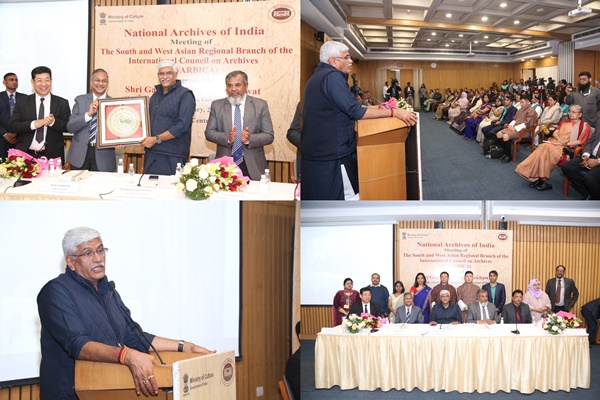
- 23 Feb 2025
In News:
- The Executive Body Meeting of the South and West Asian Regional Branch of the International Council on Archives (SWARBICA) was held on 20–21 February 2025 at the India International Centre, New Delhi.
- It was inaugurated by Union Minister for Culture and Tourism, Gajendra Singh Shekhawat, and hosted by the National Archives of India.
- This is the second time India has hosted the SWARBICA meeting, the last being in Colombo, Sri Lanka, in 2017.
Key Highlights
- The event marked the first SWARBICA Executive Meeting in eight years.
- Participating nations included Nepal, Bhutan, Bangladesh, and Sri Lanka.
- Pakistan joined the meeting virtually, while Iran could not attend due to visa-related issues.
- The meeting provided a platform for regional cooperation in archival development, emphasizing shared cultural and religious heritage.
Agenda and Focus Areas
- Digital Preservation & Archives Digitization:
- Arun Singhal, Director General of the National Archives of India (NAI) and Treasurer of SWARBICA, presented NAI’s ongoing efforts in the digitization of archival records.
- Emphasis was placed on training programs, technical exchange, and conservation practices.
- AI in Digital Archiving:
- Aseminar titled "Using AI for Digital Preservation in Archives" was organized.
- Experts from India, Bangladesh, Nepal, Sri Lanka, and SAMHiTA (India International Centre) discussed the potential of artificial intelligence in archival science.
About SWARBICA
- It functions as a regional arm of the International Council on Archives (ICA), fostering collaboration among archival institutions in South and West Asia.
- Established: The idea was proposed in 1973 at an ICA meeting in Brussels and officially launched on 11th December 1976 at Vigyan Bhawan, New Delhi.
- SWARBICA promotes professional networking, training, resource sharing, and advancement in archival practices among member countries.
Significance for India
- Reflects India’s leadership in regional cultural cooperation.
- Aligns with national goals of digital governance, knowledge preservation, and heritage conservation.
- Strengthens India's cultural diplomacy in South and West Asia.
India–Qatar Strategic Partnership
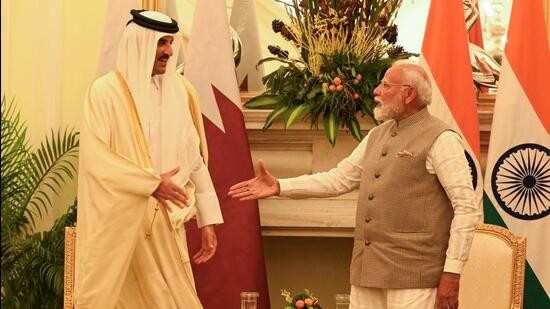
- 22 Feb 2025
In News:
In February 2025, His Highness Sheikh Tamim bin Hamad Al-Thani, Amir of Qatar, paid a State Visit to India, during which India and Qatar elevated their bilateral relations to a Strategic Partnership.
Major Outcomes of the 2025 Summit
- Strategic Partnership Agreement:Formalized multifaceted cooperation across sectors—trade, investment, energy, security, technology, and people-to-people ties.
- Trade and Economic Engagement:
- Target set to double bilateral trade to $30 billion by 2030 (from $14 billion in FY 2023–24).
- Joint Commission on Trade and Commerce established to monitor economic ties.
- Qatar Investment Authority (QIA) pledged $10 billion in Indian infrastructure, green energy, and startups.
- Revised Double Taxation Avoidance Agreement signed.
- Energy Cooperation:
- A landmark 20-year LNG supply deal (2028–2048) between QatarEnergy and Petronet LNG.
- Collaboration in renewable energy including green hydrogen, solar energy, and AI-based efficiency solutions.
- Investment and Digital Integration:
- QIA to open an office in India; Qatar National Bank to set up presence in GIFT City.
- India’s UPI system operationalized in Qatar's POS infrastructure; nationwide rollout planned.
- Technology and Innovation:
- Cooperation in AI, semiconductors, IoT, robotics and digital governance.
- Indian startups to participate in Web Summits in Doha (2024–25).
People-to-People and Cultural Ties
- Over 830,000 Indians reside in Qatar, forming the largest expatriate community.
- MoUs signed on youth, sports, education, archives, and cultural cooperation.
- Agreement to celebrate India-Qatar Year of Culture, Friendship and Sports.
Security and Counter-Terrorism
- Strong condemnation of terrorism in all forms, including cross-border terrorism.
- Commitment to enhanced cooperation in intelligence sharing, cybercrime, anti-money laundering, and countering transnational crimes.
- Emphasis on regular meetings of the Joint Committee on Security and Law Enforcement.
Labour and Health Cooperation
- Agreement to hold regular Joint Working Group on Labour and Employment to address expatriate welfare and mobility.
- Collaboration in the health sector, including pharma exports, device registration, and pandemic response mechanisms.
Geopolitical and Multilateral Cooperation
- Exchange of views on Middle East stability, UN reforms, and India-GCC engagement.
- Appreciation for Qatar’s Chairmanship of the India-GCC Strategic Dialogue (Sept 2024).
- Agreement on UN Security Council reform and advancing SDG goals through multilateralism.
Challenges Ahead
- Trade Imbalance: Imports of LNG/LPG ($12B) far exceed exports (<$2B).
- Labour Rights Concerns: Working conditions of Indian laborers in Qatar remain under scrutiny.
- Legal and Judicial Issues: Over 600 Indians in Qatari jails; need for agreement on transfer of sentenced persons.
- Geopolitical Complexities: Qatar’s involvement in West Asian diplomacy presents nuanced challenges.
- Naval Veterans Case: Pending resolution affects diplomatic sentiment.
Way Forward
- Boost Indian exports in pharmaceuticals, IT, engineering goods.
- Expedite India-Qatar Bilateral Investment Treaty (BIT) to streamline FDI.
- Expand collaboration in green hydrogen, carbon capture, and energy diversification.
- Strengthen ministerial-level engagements, labor welfare frameworks, and regional security dialogue.
NAKSHA Programme
- 22 Feb 2025
In News:
The Union Ministry of Rural Development has launched a pilot project titled NAKSHA(National Geospatial Knowledge-based Land Survey of Urban Habitations) in 152 Urban Local Bodies (ULBs) across 26 States and 3 Union Territories, with the inauguration taking place in Raisen, Madhya Pradesh.
Key Highlights:
Objective of NAKSHA
The NAKSHA initiative aims to:
- Create and update urban land records for accurate, reliable documentation of property ownership.
- Empower citizens by improving ease of access to land records.
- Facilitate urban planning and reduce land-related disputes.
- Promote transparency, efficiency, and sustainable development through an IT-based system.
Key Features
- Technical Partner: The Survey of India will carry out aerial surveys and provide orthorectified imagery via third-party vendors.
- Implementation Partners:
- Madhya Pradesh State Electronics Development Corporation (MPSEDC) will develop a web-based GIS platform.
- National Informatics Centre Services Inc. (NICSI) will provide data storage facilities.
- Execution at State Level: States and UTs will conduct field surveys and ground truthing, leading to the final publication of urban and semi-urban land records.
Chief Election Commissioner Appointment
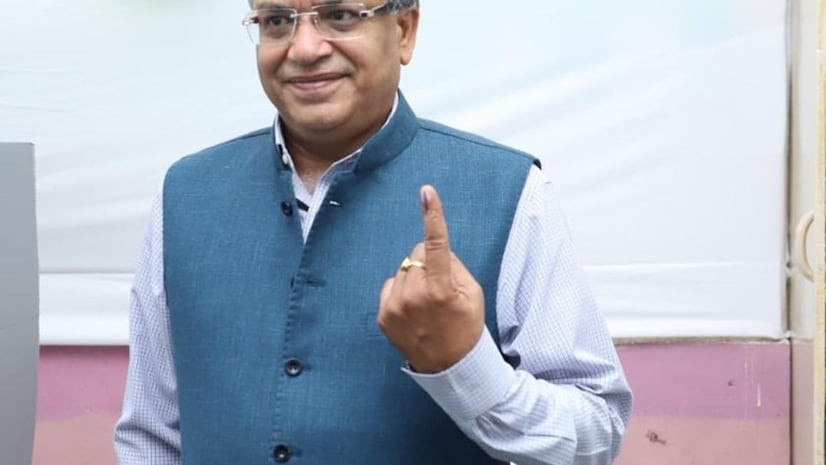
- 22 Feb 2025
In News:
Gyanesh Kumar has been appointed as the new Chief Election Commissioner (CEC) of India, becoming the first to be selected under the new legislative framework — The Chief Election Commissioner and Other Election Commissioners Act, 2023. He succeeds Rajiv Kumar. Simultaneously, Dr. Vivek Joshi, former Haryana Chief Secretary, was appointed as an Election Commissioner.
Constitutional Basis
- Article 324 of the Indian Constitution provides for the Election Commission of India (ECI), consisting of the CEC and such other Election Commissioners as the President may determine.
- It vests the superintendence, direction, and control of elections in the ECI for conducting elections to Parliament, State Legislatures, and for the offices of the President and Vice President.
Earlier Appointment Process
- Governed by convention and the Election Commission (Conditions of Service of Election Commissioners and Transaction of Business) Act, 1991.
- The CEC was appointed by the President on the advice of the Prime Minister, with no formal selection mechanism defined in law.
New Appointment Process (2023 Act)
The Chief Election Commissioner and Other Election Commissioners Act, 2023 introduced a formal selection process:
- Selection Committee:
- Prime Minister (Chairperson)
- A Union Cabinet Minister (nominated by the PM)
- Leader of Opposition (or largest opposition party leader) in the Lok Sabha
- Search Committee:
- Headed by the Cabinet Secretary, this body shortlists eligible candidates.
- Eligibility Criteria:
- Must be a person of integrity
- Must have experience in election management
- Must be or have been a Secretary (or equivalent) to the Government of India
Service Conditions (As per 2023 Act)
- Salary & Status: Equivalent to that of a Cabinet Secretary (earlier: Supreme Court judge).
- Tenure: 6 years or till the age of 65, whichever is earlier.
- Reappointment: Not permitted.
Removal Process
- CEC: Can only be removed in the same manner and on the same grounds as a Supreme Court judge (i.e., by Parliament through impeachment).
- Election Commissioners: Can only be removed on the recommendation of the CEC.
Functions & Powers of CEC
- Conducts elections to the Lok Sabha, Rajya Sabha, State Assemblies, and offices of the President & Vice President.
- Regulates political parties and election funding.
- Enforces the Model Code of Conduct (MCC).
- Maintains and updates electoral rolls and supervises the voter registration process.
- Has the authority to disqualify candidates and cancel elections in case of serious irregularities.
- Advises the President and Governors on election-related matters.
Judicial Context & Controversy
- In the Anoop Baranwal vs Union of India case, the Supreme Court ruled that the independence of the ECI must be preserved and directed that a law be enacted to define the appointment process.
- Until such legislation was passed, the Court had prescribed a selection committee comprising:
- The Prime Minister
- The Leader of Opposition in the Lok Sabha
- The Chief Justice of India (CJI)
- However, the 2023 Act excluded the CJI, replacing the judiciary with another executive appointee, raising concerns about executive dominance.
- Multiple petitions challenging the constitutionality of the Act are pending before the Supreme Court.
Exercise Komodo

- 21 Feb 2025
In News:
The Indian Navy's platforms—INS Shardul, an amphibious warfare ship, and the P-8I Long Range Maritime Surveillance Aircraft—participated in the International Fleet Review (IFR) 2025 and the 5th edition of the Multilateral Naval Exercise Komodo held in Bali, Indonesia, from 15 to 22 February 2025.
International Fleet Review (IFR) 2025
- IFR 2025 is a prestigious multinational naval event reviewed by the President of Indonesia.
- Participating nations showcased naval assets including warships, helicopters, and maritime aircraft.
- The Indian Navy took part in:
- International Maritime Security Symposium
- Tactical floor games
- City parade
- Coral and mangrove plantation
- Beach cleaning activities
- Baby turtle release, promoting environmental and maritime sustainability.
Exercise Komodo 2025
- Initiated in 2014, Exercise Komodo is a non-combat multilateral naval exercise hosted by the Indonesian Navy.
- The 2025 edition had the theme: "Maritime Partnership for Peace and Stability".
- Objectives:
- Promote maritime cooperation
- Enhance interoperability
- Foster regional security cooperation
- Key Features:
- Participation from 39 countries
- Involvement of 34 foreign and 18 Indonesian Navy warships
- Included:
- Naval exercises
- Officer exchange forums
- Bilateral naval meetings
- Defense exhibition
- Cultural parades
Strategic Context and Bilateral Engagements
- The participation builds upon the Indian Navy’s involvement in the La Pérouse exercises in Indonesia (January 2025) involving INS Mumbai and a P-8I aircraft.
- It coincided with the visit of Admiral Muhammad Ali, Chief of Staff of the Indonesian Navy, to India during the Republic Day 2025, accompanying President Prabowo Subianto as the Chief Guest.
Significance for India
- The participation reaffirms India’s commitment to SAGAR (Security and Growth for All in the Region).
- It strengthens India-Indonesia defense ties and underscores India's proactive role in regional maritime diplomacy and environmental stewardship.
Gravehawk Hybrid Air Defense System

- 20 Feb 2025
In News:
The Gravehawk is a newly developed mobile surface-to-air missile (SAM) system, introduced by the United Kingdom in collaboration with Denmark, to bolster Ukraine's defenses against Russian aerial threats. This innovative hybrid system exemplifies the modern trend in NATO of repurposing existing missile technology to build flexible, cost-effective, and rapidly deployable air defense platforms.
Overview and Development
- The Gravehawk system is designed to counter short-range aerial threats such as drones, cruise missiles, and low-flying aircraft.
- It combines Western and Soviet-era missile technologies, providing Ukraine with a unique edge in a contested aerial environment.
- The United Kingdom, in partnership with Denmark, is actively delivering these systems to Ukraine, with 15 additional units expected in the coming months.
- The cost per system is approximately USD 1.25 million, with Denmark covering 50% of the expense.
Key Features and Technical Capabilities
- Missiles Used: The system utilizes infrared-guided missiles including the AIM-132 ASRAAM (Advanced Short Range Air-to-Air Missile) and the Soviet-origin R-73 (AA-11 Archer).
- Guidance System: Both missiles employ passive infrared (IR) seekers, allowing them to track heat signatures of targets without emitting radar signals, thereby reducing vulnerability to electronic warfare (EW) detection.
- Speed and Range: Missiles can reach speeds of up to Mach 2.5 and engage targets at distances of approximately 12 miles (about 19 km).
- R-73 Specifics: Originally developed for close-range dogfights, the R-73 is highly maneuverable, capable of tracking targets up to 40 km ahead and 300 meters behind, with off-boresight targeting up to 40 degrees.
- Mobility: Mounted on all-terrain Drops vehicles, the system offers rapid ground mobility and deployment flexibility.
- Containerized Launch Platform: Housed in ISO-standard shipping containers, the system’s roof rolls back to expose two missile rails—repurposed from Soviet-era fighters like the Sukhoi Su-27.
- Crew and Operation: Operated by a five-member crew, the system incorporates electro-optical and infrared targeting cameras, enabling remote operation and safe standoff missile launches.
Strategic Relevance for Ukraine
- Ukraine’s acquisition of the Gravehawk system marks a significant advancement in its air defense capabilities, particularly in the face of persistent Russian air and missile attacks.
- It enhances short-range interception capacity, allows for quick reaction deployment, and reduces dependence on continuous NATO resupplies. Additionally, the system’s use of widely available R-73 missiles ensures operational sustainability.
- The Gravehawk is part of a broader effort to field "hybrid systems", where older missile stocks are integrated into modern platforms.
- Other such initiatives include FrankenSAM programs developed by the U.S. and UK, where systems like ASRAAM have been adapted to ground-based launchers.
- Ukraine has also employed R-73 missiles on drone boats and unmanned surface vessels to target Russian air assets, showcasing the multi-domain applicability of these munitions.
Prime Minister’s Yoga Awards 2025
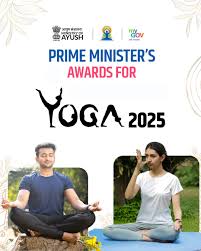
- 20 Feb 2025
In News:
The Ministry of Ayush has officially opened nominations for the Prime Minister’s Yoga Awards 2025, which will be conferred on the occasion of the International Day of Yoga (IDY) 2025. These prestigious awards aim to honour individuals and organizations that have made exceptional and sustained contributions to the promotion and development of Yoga at both national and international levels.
Background and Objective
Instituted by the Government of India and endorsed by the Hon’ble Prime Minister, the awards recognize Yoga’s vital role in:
- Health promotion
- Disease prevention
- Management of lifestyle-related disorders
The initiative reflects the government’s broader vision to acknowledge and encourage meaningful contributions in advancing Yoga as a holistic system of well-being and preventive healthcare.
Award Categories and Benefits
The awards will be presented in the following four categories:
- National Individual
- National Organization
- International Individual
- International Organization
Each awardee will receive:
- A Trophy
- A Certificate of Recognition
- A Cash Prize of ?25 lakh
Eligibility Criteria
- Individual applicants must be 40 years or older.
- They should possess a minimum of 20 years of committed work in promoting Yoga.
- Organizations must have a proven track record in the field of Yoga development and outreach.
Applicants or nominees can apply for only one category (either National or International) in a given year. Applications can be submitted directly by individuals/entities or through nominations made by recognized Yoga institutions.
Application and Submission Process
- Nominations and applications are to be submitted through the MyGov platform:
https://innovateindia.mygov.in/pm-yoga-awards-2025/ - The link is also accessible on the Ministry of Ayush website and those of its autonomous bodies.
- The deadline for submission is March 31, 2025.
Selection Procedure
The award process involves two key stages:
- A Screening Committee formed by the Ministry of Ayush will evaluate all entries and recommend a maximum of 50 nominations per category.
- These shortlisted names will be reviewed by a high-level Evaluation Jury comprising eminent personalities from diverse fields, which will serve as the final decision-making body.
Significance of the Initiative
The Prime Minister’s Yoga Awards not only celebrate excellence in Yoga but also further the objectives of initiatives like Fit India Movement, Ayushman Bharat, and the mainstreaming of traditional Indian wellness systems.
The awards are a key element of the Ministry of Ayush’s broader mandate to integrate traditional systems such as Ayurveda, Yoga & Naturopathy, Unani, Siddha, Sowa-Rigpa, and Homeopathy into the healthcare ecosystem of India.
India–U.S. Underwater Domain Awareness Cooperation
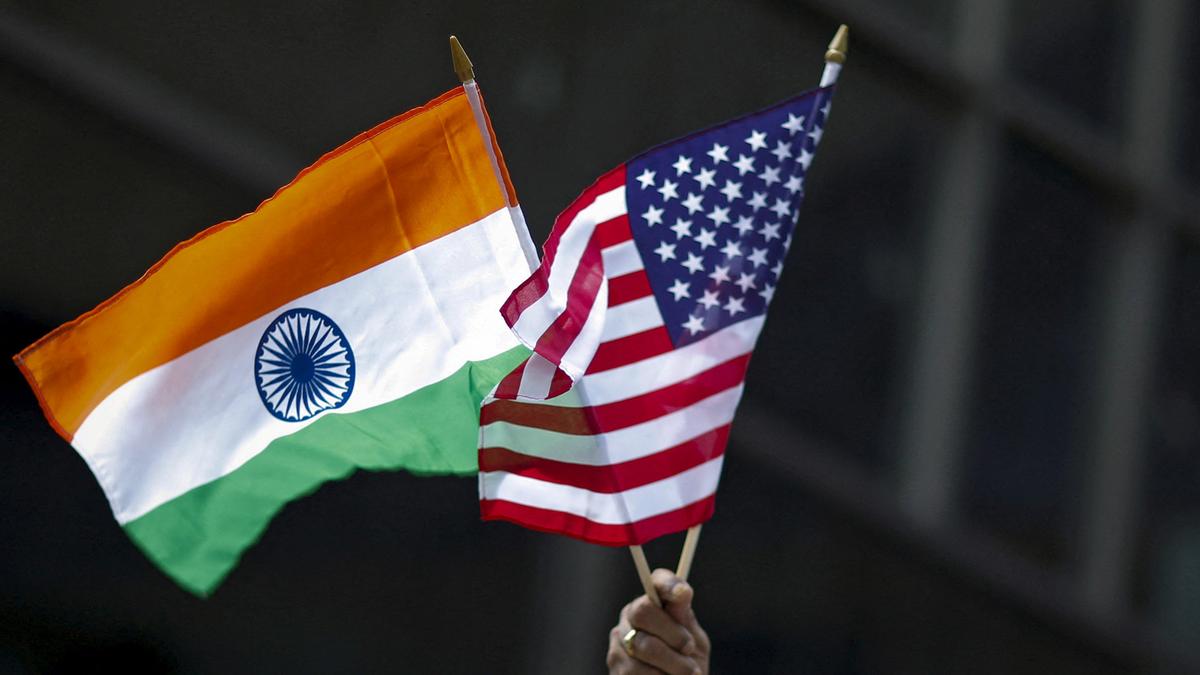
- 20 Feb 2025
In News:
India and the United States have deepened their defense partnership by launching the Autonomous Systems Industry Alliance (ASIA), a landmark initiative focused on co-producing Underwater Domain Awareness (UDA) technologies in India.
Understanding Underwater Domain Awareness (UDA)
- UDA refers to the ability to monitor, detect, and evaluate activities beneath the surface of oceans and seas. It plays a vital role in ensuring maritime security, enabling anti-submarine warfare (ASW), managing marine resources, responding to disasters, and protecting the underwater environment.
- In the backdrop of China’s rapid naval expansion and its increasing footprint in the Indian Ocean Region (IOR), enhancing UDA has become imperative for India, both at the bilateral level and as part of the Quad framework (India, U.S., Japan, and Australia).
Strategic Significance and Geopolitical Relevance
The UDA collaboration marks a significant step in Indo-U.S. strategic relations. As the maritime domain becomes increasingly contested, especially in the Indo-Pacific, India’s need for robust submarine detection, surveillance, and underwater intelligence capabilities has become critical. The joint initiative aligns with broader strategic goals such as:
- Enhancing Quad cooperation to maintain a free, open, and secure Indo-Pacific.
- Countering threats arising from Chinese submarine activities and naval assertiveness.
- Enabling shared maritime patrols and airlift capacity for disaster response across the region.
Key Technologies Identified for Co-Production
Several high-end underwater surveillance systems have been identified for co-production or co-development in India under the ASIA framework:
- Sea Picket: An autonomous sonar surveillance platform developed by Thayer Mahan.
- Wave Glider Unmanned Surface Vehicles (USVs): Discussions are underway between Boeing’s Liquid Robotics and Sagar Defence Engineering for the co-production of 60 platforms in India.
- Low-Frequency Active Towed Sonar: Negotiations involve L3 Harris and Bharat Electronics Limited (BEL) for co-development.
- Multistatic Active (MSA) Sonobuoys: A sophisticated submarine-tracking technology, to be co-produced in India by Ultra Maritime and Bharat Dynamics Limited (BDL), with a production line expected by 2027.
- Large-Diameter Autonomous Undersea Vehicles: Produced by Anduril, these offer deep-sea monitoring capabilities.
- Triton Autonomous Underwater and Surface Vehicle: Developed by Ocean Aero, integrates underwater and surface operations.
Existing and Emerging ASW Platforms
India’s anti-submarine warfare capabilities have already been bolstered through U.S. defense acquisitions, including:
- 12 P-8I Poseidon maritime patrol aircraft currently in service.
- 24 MH-60R Multi-Role Helicopters, being inducted to enhance ASW and surveillance.
- 15 MQ-9B Sea Guardian UAVs, part of a 31-unit contract with deliveries beginning from 2029.
- An additional six P-8I aircraft were cleared during the recent bilateral talks.
These platforms significantly improve maritime interoperability among Quad nations and provide India with a strategic edge in underwater operations.
Make-in-India and Technological Sovereignty
The UDA initiative strongly supports India’s Atmanirbhar Bharat vision by fostering indigenous manufacturing of advanced underwater systems. It introduces a first-of-its-kind co-production framework in sensitive defense technologies, thus catalyzing innovation and industrial capability within the Indian defense sector.
The initiative also aims to strengthen logistics, intelligence-sharing, and force mobility between the Indian and U.S. armed forces. Enhanced training, joint operations, and technological exchanges will help sustain forward deployments and enable humanitarian and disaster relief missions across the Indo-Pacific.
Exercise Dharma Guardian 2025
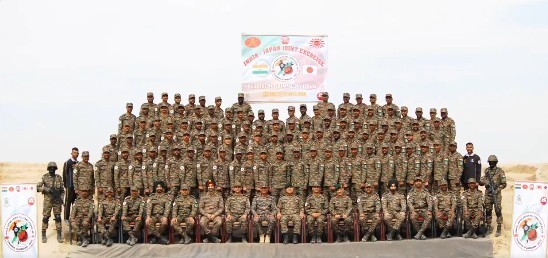
- 20 Feb 2025
In News:
The 6th edition of Exercise Dharma Guardian, a joint annual military exercisealternately hosted in India and Japan since 2018is scheduled from February 25 to March 9, 2025, at Mount Fuji, Japan.
Key Highlights:
Objectives:
- Strengthen Bilateral Defence Relations: Enhances military diplomacy under the India–Japan Special Strategic and Global Partnership.
- Promote Interoperability: Develops joint operational capabilities and tactical synergy in line with UN peacekeeping mandates (Chapter VII).
- Urban and Semi-Desert Warfare: Trains troops in counter-terrorism operations and urban combat scenarios.
- Regional Stability: Supports the Indo-Pacific security architecture and complements Quad defence objectives (India, Japan, US, Australia).
Key Features of Dharma Guardian 2025
- Advanced Tactical Training: Close-quarter battle drills, live-fire exercises, battlefield medical evacuation.
- Joint Counter-Terror Operations: Conducted under UN charter guidelines for multinational cooperation.
- 48-hour Validation Exercise: Simulated real-time combat for assessing operational readiness and coordination.
- ISR and Tactical Mobility Drills: Involves establishing temporary operating bases, ISR (Intelligence, Surveillance, Reconnaissance) grids, mobile vehicle checkpoints, and heliborne insertions.
- House Intervention & Search Operations: Practical training for securing urban areas against militant threats.
- Weapons & Equipment Display: Demonstrates India’s growing defence manufacturing under the Atmanirbhar Bharat initiative.
Mount Fuji – Host Site
- Geographical Significance: Japan’s highest peak at 3,776.24 meters, located 100 km southwest of Tokyo.
- Cultural Importance: Recognized as a UNESCO World Heritage Site (2013) and revered as one of Japan’s “Three Holy Mountains.”
- Training Terrain: Its stratovolcanic landscape provides a realistic backdrop for high-altitude and rugged terrain operations.
Related India-Japan Military Exercises
India and Japan conduct a wide spectrum of bilateral and multilateral defense exercises across all services:
Exercise Name Service Branch Focus Area
Dharma Guardian Army Land-based counter-terror and urban warfare
JIMEX Navy Naval interoperability and maritime security
Malabar (Quad) Navy (Multilateral) Naval drills with US and Australia
Veer Guardian Air Force Air combat tactics and coordination
ShinyuuMaitri Air Force Air mobility and humanitarian operations
National Skill Development Corporation (NSDC)
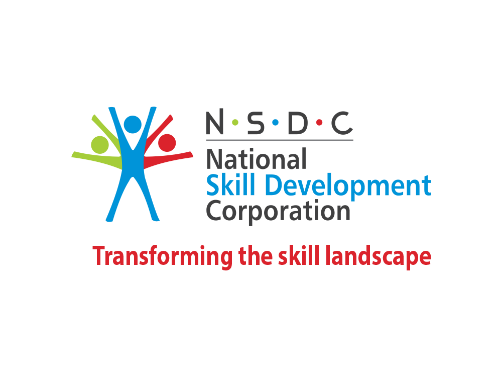
- 19 Feb 2025
In News:
The National Skill Development Corporation (NSDC) has announced plans to establish 50 Future Skills Centres (FSCs) and 10 NSDC International Academies to enhance skill development and improve workforce readiness in India. This initiative aims to address the country's growing demand for skilled professionals, particularly in emerging technologies and international markets.
About NSDC
- NSDC is a not-for-profit public limited company set up to promote skill development across India.
- It operates under the Ministry of Skill Development & Entrepreneurship (MSDE).
- Established on July 31, 2008, NSDC was founded as a Public-Private Partnership (PPP) under Section 25 of the Companies Act, 1956 (now Section 8 under the 2013 Act).
- The corporation operates with a 49% government stake and 51% private sector participation, ensuring a balanced approach to skill development through public and private sector collaboration.
Key Objectives of NSDC
- Bridging the Skill Gap: NSDC aims to fill the gap between industry requirements and the available workforce by providing industry-relevant training. This enhances workforce employability and supports the growth of the Indian economy.
- Financial Support for Enterprises: NSDC provides funding and concessional loans to enterprises, start-ups, and training organizations to expand their operations and develop a skilled workforce.
- Skilling the Workforce for Emerging Technologies: The corporation focuses on upskilling individuals in emerging technologies to make them market-ready.
Key Functions of NSDC
- Skill Development & Training: NSDC provides vocational training and certification across emerging technologies to align the workforce with current industry needs, ensuring that individuals are equipped with the necessary skills to succeed in the job market.
- Apprenticeship & Job Training: Under the National Apprenticeship Promotion Scheme (NAPS), NSDC trains around 5 million apprentices by disbursing ?100,250 million for skill-based learning, giving them hands-on experience and industry exposure.
- Digital & Remote Skilling: Through the Skill India Digital Hub (SIDH), NSDC offers over 7,100 courses in 23 languages, catering to 30 crore candidates. These online courses provide accessibility to skill development programs across the country, particularly for individuals in remote and rural areas.
- Job & Career Support: NSDC runs JobX, a platform that connects job seekers with potential employers. This platform offers services such as resume building, career coaching, and placement assistance, having already supported 4 million candidates in securing jobs.
New Initiatives by NSDC
To further strengthen India’s skill ecosystem, NSDC is establishing 50 Future Skills Centres (FSCs) and 10 NSDC International Academies. These initiatives will focus on:
- Future Skills Centres: These centers will offer training in emerging fields such as artificial intelligence, data science, cybersecurity, and robotics, ensuring that India's workforce is prepared for future job markets.
- International Academies: The academies will focus on global skill standards and international certifications, enhancing the employability of Indian workers in global markets.
NAMASTE Scheme
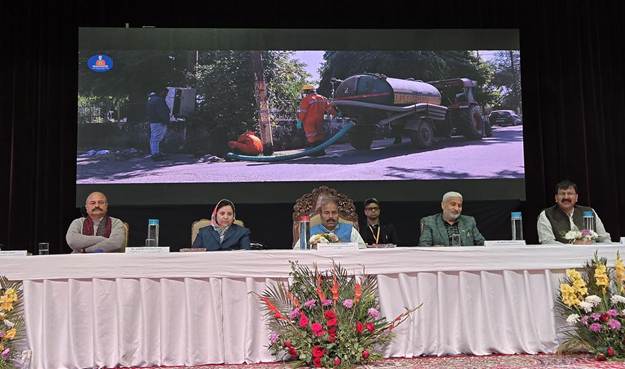
- 19 Feb 2025
In News:
The National Action for Mechanized Sanitation Ecosystem (NAMASTE) scheme, launched by the Government of India, aims to empower sanitation workers, particularly Sewer and Septic Tank Workers (SSWs), also known as SafaiMitras.
Key Highlights:
- It focuses on ensuring their dignity, safety, and economic empowerment, while promoting the mechanization of sanitation processes.
- The scheme is designed to address the challenges faced by these workers, who are often exposed to hazardous conditions.
Objectives of the NAMASTE Scheme
The primary objectives of the NAMASTE scheme include:
- Formalization of sanitation work and enhancing occupational safety.
- Promotion of mechanized cleaning techniques to reduce manual interventions.
- Providing personal protective equipment (PPE) and other safety devices to workers.
- Ensuring economic and social empowerment of sanitation workers.
Implementing Agencies and Timeline
- The NAMASTE Scheme is implemented by the Ministry of Social Justice and Empowerment (MoSJE) and the Ministry of Housing and Urban Affairs (MoHUA).
- The scheme is executed by the National SafaiKaramcharis Finance and Development Corporation (NSKFDC), under MoSJE.
- The scheme is scheduled for implementation from FY 2023-24 to 2025-26, with a target group comprising sewer workers, septic tank workers, and waste pickers (the latter being added in 2024).
Key Initiatives Under NAMASTE
- Distribution of PPE Kits: Under the scheme, PPE kits are provided to sanitation workers to safeguard them from health hazards, especially while working in unsafe environments like sewer lines and septic tanks. These kits include masks, gloves, goggles, face shields, gowns, and shoe covers.
- Ayushman Health Cards: Ayushman Bharat Pradhan Mantri Jan Arogya Yojana (AB-PMJAY) health cards are distributed to SSWs under the scheme. These cards enable workers to access cashless healthcare at empaneled hospitals, ensuring that sanitation workers receive timely medical attention without financial burden.
- Capacity Building and Training: The scheme promotes capacity building for SSWs through training programs on safety protocols, mechanized cleaning processes, and the use of modern sanitation technologies. This helps improve the efficiency and safety of their work, while also reducing manual handling.
- Promoting Mechanization: To reduce the hazardous practice of manual scavenging, the scheme focuses on providing mechanized equipment to enhance sanitation operations and create safer working conditions for workers.
Mount Etna Eruption 2025
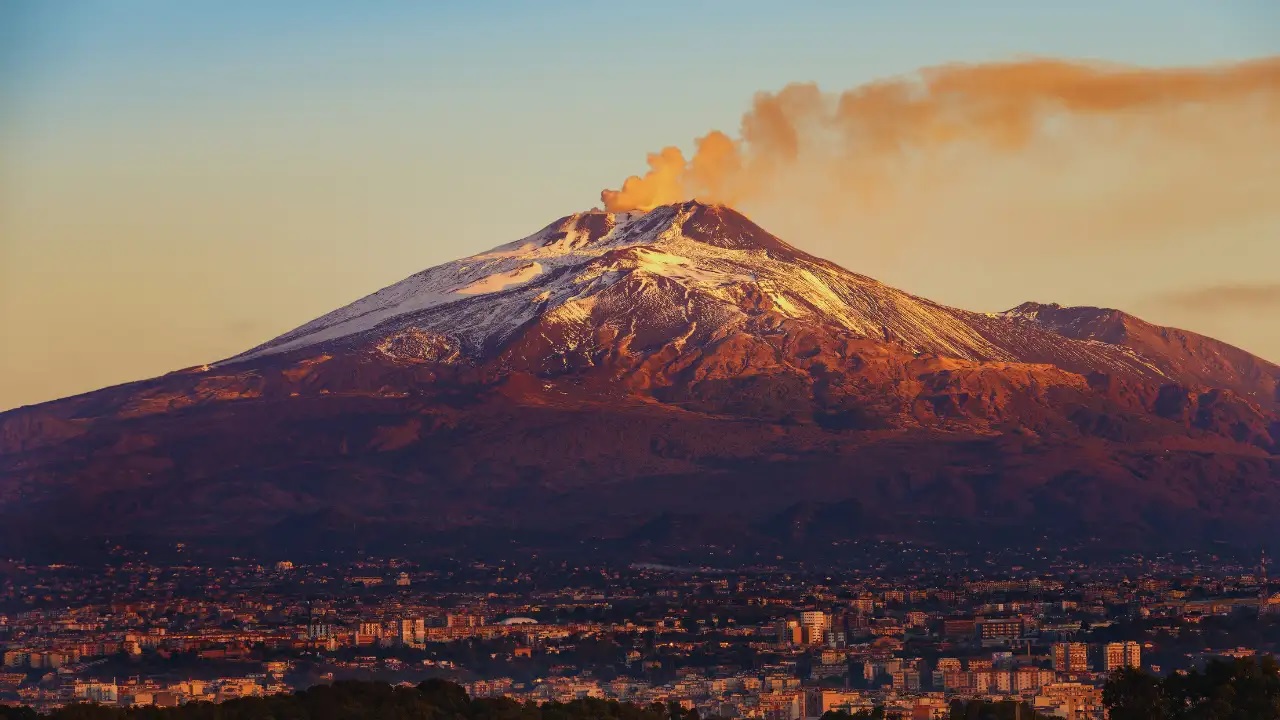
- 18 Feb 2025
In News:
On February 12, 2025, Mount Etna, Europe's tallest and most active volcano, erupted once again, spewing lava flows and dense ash clouds into the atmosphere. The event drew attention not just due to its visual spectacle, but also because of the geological, environmental, and socio-economic implications it carries.
About Mount Etna
- Location: Eastern coast of Sicily, Italy — the largest island in the Mediterranean Sea.
- Type:Active stratovolcano, known for frequent eruptions.
- Height & Size: Highest peak south of the Alps and tallest active volcano in Europe; rises over 3,300 meters and covers 1,190 sq. km with a basal circumference of 140 km.
- Tectonic Setting: Lies above the convergent boundary of the African and Eurasian tectonic plates, making it a hotspot for seismic and volcanic activity.
- Eruption History: Recorded to have erupted over 200 times since 1500 BCE, with persistent volcanic activity.
- UNESCO Recognition: Declared a UNESCO World Heritage Site in 2013 for its exceptional geological features, cultural relevance, and continuous scientific monitoring.
- Decade Volcano Status: Designated a Decade Volcano by the United Nations due to its proximity to densely populated areas, including the city of Catania, and the potential risk it poses, warranting special scientific attention.
India–US TRUST Initiative
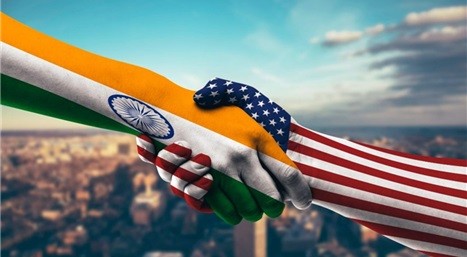
- 18 Feb 2025
In News:
India and the United States launched the Transforming Relationship Utilizing Strategic Technology (TRUST) initiative during the Indian Prime Minister’s 2025 visit to the US. This landmark partnership aims to strengthen bilateral cooperation across critical and emerging technology sectors, diversify global supply chains, and reduce dependence on China in strategic industries.
Key Objectives and Scope of the TRUST Initiative
The TRUST initiative is a comprehensive framework focused on:
- Critical Minerals and Advanced Materials
- Establishing resilient supply chains for critical minerals such as lithium, cobalt, and rare earth elements (REEs)—vital for sectors like defense, semiconductors, clean energy, and electric vehicles (EVs).
- Launch of the Strategic Mineral Recovery Programme to recover and process critical minerals from industrial waste.
- Joint R&D and investment under the Minerals Security Partnership (MSP) and Minerals Security Finance Network (MSFN).
- India to scale up exploration, processing, and recycling of critical minerals under the National Critical Minerals Mission (2025–31) with a ?16,300 crore outlay.
- Pharmaceutical Sector Collaboration
- Reducing India’s reliance on China for Active Pharmaceutical Ingredients (APIs) through alternative supply chains and expanded API manufacturing.
- Encouraging investment in Indian pharma production, including facilities in the US.
- Pharma formed 21.9% of India’s $20 billion consumer goods exports to the US in 2023.
- High-Tech and Emerging Technologies
- Joint R&D in semiconductors, AI, quantum computing, space, defense, biotechnology, and energy.
- U.S.-India AI Roadmap to be finalized by 2025, including data center infrastructure, processor access, and AI applications.
- Facilitating innovation through academic, industrial, and government collaboration.
- Technology Transfer and Trade Facilitation
- Easing export controls and restrictions to foster high-tech trade.
- Enabling smoother cross-border technology flows and investment under mechanisms like the CHIPS Act (ITSI Fund).
Associated Initiatives Enhancing TRUST
- iCET (Initiative on Critical and Emerging Technologies) – Launched in 2022, focuses on bilateral cooperation in semiconductors, AI, quantum, and wireless tech with defense applications.
- INDUS-X – Defense innovation initiative involving India’s iDEX and the US Defense Innovation Unit (DIU), emphasizing secure chip designs and green energy.
- CHIPS Act Collaboration – ITSI Fund supports India's semiconductor capacity through funding for R&D and infrastructure.
Strategic Significance
- Reducing China Dependence:China dominates ~70% of global REE production. TRUST helps India and the US build alternative, secure supply chains.
- Boosting Atmanirbhar Bharat:TRUST supports India’s goals under the National Critical Minerals Mission to become self-reliant in key strategic sectors.
- Enhancing Tech and Defense Capability:Ensures timely access to rare materials essential for missiles, radars, fighter jets, AI hardware, and quantum computing.
- Strengthening Pharma and Health Security:Addresses global API shortages and reduces vulnerability in critical drug manufacturing.
- Promoting Clean Energy Transition:Secures supply of minerals like lithium and cobalt essential for battery production and renewable energy tech.
- Fostering Innovation and Investment:Encourages private sector collaboration and US investments in India’s tech, mineral, and pharma sectors.
Current Status of India’s Critical Minerals Ecosystem
- Imports: India is a net importer of most critical minerals; import bill (FY24) stood at approx. ?30,000 crore.
- Exports: India remains a net exporter in rare earths.
- Budgetary Allocation (2025–31):
- ?7,000 crore for exploration.
- ?1,500 crore for recycling incentives.
14th Asian Fisheries and Aquaculture Forum (14AFAF)
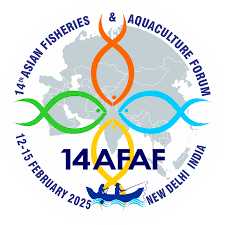
- 17 Feb 2025
In News:
India is set to host the 14th Asian Fisheries and Aquaculture Forum (14AFAF) from February 12–14, 2025, at the ICAR Convention Centre, Pusa Campus, New Delhi.
Key Highlights
- This triennial international event—organized by the Asian Fisheries Society (AFS), Indian Council of Agricultural Research (ICAR), Department of Fisheries (DoF), and AFS Indian Branch (AFSIB)—is themed "Greening the Blue Growth in Asia-Pacific".
- It aims to promote sustainable, inclusive, and innovation-driven development in the fisheries and aquaculture sector.
- Previous Indian Host: India is hosting the AFAF for the second time, the first being the 8th AFAF in Kochi (2007).
- Legacy: AFAF, headquartered in Kuala Lumpur, Malaysia, has been a leading platform for fostering global cooperation in fisheries and aquaculture since its inception.
India's Role and Significance
- India ranks second globally in total fish production and aquaculture output, underlining its emerging leadership in the blue economy.
- The forum presents a strategic opportunity to:
- Showcase India’s technological and policy advancements.
- Strengthen international collaborations.
- Promote sustainable, resilient, and globally competitive aquaculture systems.
Forum Structure and Thematic Sessions
The event will feature 20+ technical sessions and keynote presentations by international experts, focusing on priority areas such as:
- Sustainable Fisheries Management:Emphasis on responsible fishing, biodiversity preservation, and efficient resource utilization.
- Climate Change and Fisheries:Addressing climate impacts on aquatic ecosystems and developing adaptive strategies.
- Smart Aquaculture & Technology:Integration of AI, IoT, and blockchain to enhance fish farming efficiency and monitoring.
- Fish Genetics & Biotechnology:Innovations for disease resistance, improved yields, and genetic advancements.
- Post-Harvest and Value Addition:Improving fish quality, market access, and export competitiveness through better processing techniques.
President’s Rule Imposed in Manipur
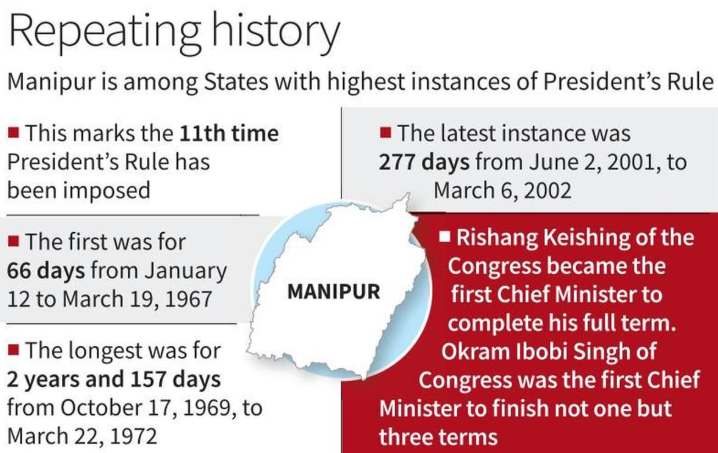
- 16 Feb 2025
In News:
On 13th February 2025, President DroupadiMurmu imposed President’s Rule in Manipur under Article 356 of the Constitution, following a report submitted by the State Governor Ajay Kumar Bhalla. The move comes in the wake of a prolonged period of ethnic violence, governance vacuum, and the resignation of Chief Minister N. Biren Singh on 9th February 2025.
Constitutional Provisions:
- Article 356 empowers the President to assume control of a state’s administration if it is determined that the state cannot be governed as per constitutional provisions.
- The Governor’s report or other evidence of breakdown is a prerequisite.
- Under this, the elected state government is dismissed, and the Governor becomes the executive head on behalf of the President.
- The State Legislative Assembly is either dissolved or placed under suspended animation. In Manipur’s case, it is under suspended animation, with its term valid until 2027.
- The proclamation must be approved by both Houses of Parliament within two months, and if extended, it can last up to six months at a time, with a maximum duration of three years.
Crisis Background and Ethnic Conflict
Manipur has witnessed an intense ethnic conflict between the Meitei and Kuki-Zo communities since May 3, 2023. The violence has led to:
- Over 250 people killed, and
- More than 60,000 displaced.
Security concerns and political instability escalated after the Chief Minister’s resignation, with the BJP leadership unable to find a consensus candidate for replacement. The deteriorating law-and-order situation, coupled with governance paralysis, prompted the imposition of President’s Rule.
Security and Migration Concerns
Former CM N. Biren Singh raised alarm over:
- Rising illegal immigration through the 398-km porous border with Myanmar, worsened by the Free Movement Regime (FMR).
- A demographic shift threatening the State’s land, identity, and resources.
- Post-violence governance failure, as state machinery struggled to respond effectively.
He emphasized the need to intensify detection and deportation of illegal immigrants, a concern linked to the root causes of ethnic tension.
Historical Context
- This is not the first time Manipur has come under central rule. The last imposition of President’s Rule in Manipur lasted 277 days, from June 2, 2001 to March 6, 2002.
Devolution Index Report 2024
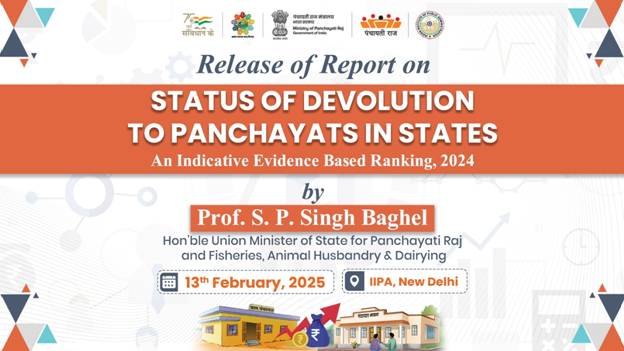
- 16 Feb 2025
In News:
Recently, the Union Minister of State Prof. S. P. Singh Baghel released the Devolution Index Report at the Indian Institute of Public Administration (IIPA), New Delhi.
Titled “Status of Devolution to Panchayats in States – An Indicative Evidence-Based Ranking 2024”, the report assesses the extent of autonomy and empowerment of Panchayati Raj Institutions (PRIs) across Indian States and UTs.
Context and Constitutional Framework
The initiative is anchored in the vision of Article 243G of the Constitution and the 73rd Constitutional Amendment, which mandates the devolution of powers, authority, and responsibilities to Panchayats over 29 subjects listed in the Eleventh Schedule. It reflects the spirit of grassroots democracy and aims to realize the vision of "Local Self-Government".
Core Objectives and Dimensions of the Index
The Devolution Index provides an evidence-based evaluation of decentralization and self-governance in rural India. It assesses PRIs across six critical dimensions:
- Framework – Legal and institutional setup for decentralization.
- Functions – Scope of responsibilities devolved to Panchayats.
- Finances – Fiscal powers and resource autonomy.
- Functionaries – Availability and control over human resources.
- Capacity Building – Training and skill development mechanisms.
- Accountability – Transparency, audit mechanisms, and citizen participation.
Significance and Policy Implications
- Strengthening Cooperative Federalism: By highlighting inter-state comparisons, the Index fosters competitive federalism in the spirit of collaborative governance.
- Multi-Stakeholder Utility:
- Citizens: Increases transparency in Panchayat functioning and fund utilization.
- Elected Representatives: Offers a data-driven basis for decentralization advocacy.
- Officials & Policymakers: Acts as a policy instrument for reform and targeted capacity building.
- Aligns with National Vision:
- Supports Viksit Bharat goals through ??????????????????????????????? (developed and empowered PRIs).
- Contributes to inclusive rural development and grassroots democratization.
Income-tax Bill, 2025
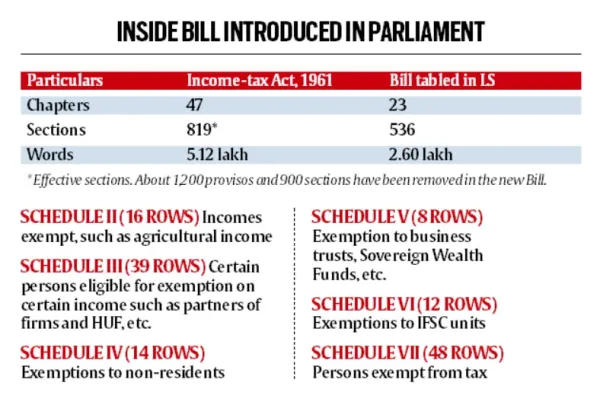
- 16 Feb 2025
In News:
The Income-tax Bill, 2025, tabled in Parliament on February 13, 2025, seeks to repeal and replace the Income-tax Act, 1961, marking a landmark step in tax law simplification.
It reflects the government's commitment to ease of doing business, legal clarity, and tax compliance, without altering the core tax policy or rate structure.
Guiding Principles
- Textual and structural simplification for better clarity.
- Policy continuity—no major tax policy changes.
- Preservation of existing tax rates for predictability.
Approach and Methodology
- Three-pronged strategy:
- Simplify language and eliminate legalese.
- Remove obsolete, redundant, and repetitive provisions.
- Reorganize the Act for logical and easier navigation.
- Consultative process:
- 20,976 online suggestions received.
- Stakeholder consultations with taxpayers, professionals, and industry bodies.
- International best practices reviewed, notably from Australia and the UK.
Quantitative Simplification
Parameter Income-tax Act, 1961 Income-tax Bill, 2025 Change
Words 5,12,535 2,59,676 ↓ 2,52,859
Chapters 47 23 ↓ 24
Sections 819 536 ↓ 283
Tables 18 57 ↑ 39
Formulae 6 46 ↑ 40
Key Features and Improvements
- Qualitative Enhancements:
- Use of simplified and accessible language.
- Consolidation of amendments to reduce fragmentation.
- Enhanced readability via structured use of tables and formulae.
- Elimination of outdated provisions.
- Introduction of "Tax Year":Defined as the 12-month period beginning April 1, providing better uniformity.
- Crypto as Capital Asset:Virtual Digital Assets (VDAs) such as cryptocurrencies included in the definition of "property", now taxable as capital assets.
- Dispute Resolution Clarity:Improved transparency in Dispute Resolution Panel (DRP) procedures by including points of determination and reasoning—addressing a key criticism of ambiguity in the earlier framework.
- Removal of Obsolete Exemptions:Section 54E, providing capital gain exemptions for transfers before April 1992, has been scrapped.
- Expected Timeline:Once enacted, the Income-tax Act, 2025 is proposed to come into effect from April 1, 2026.
Gender Budgeting
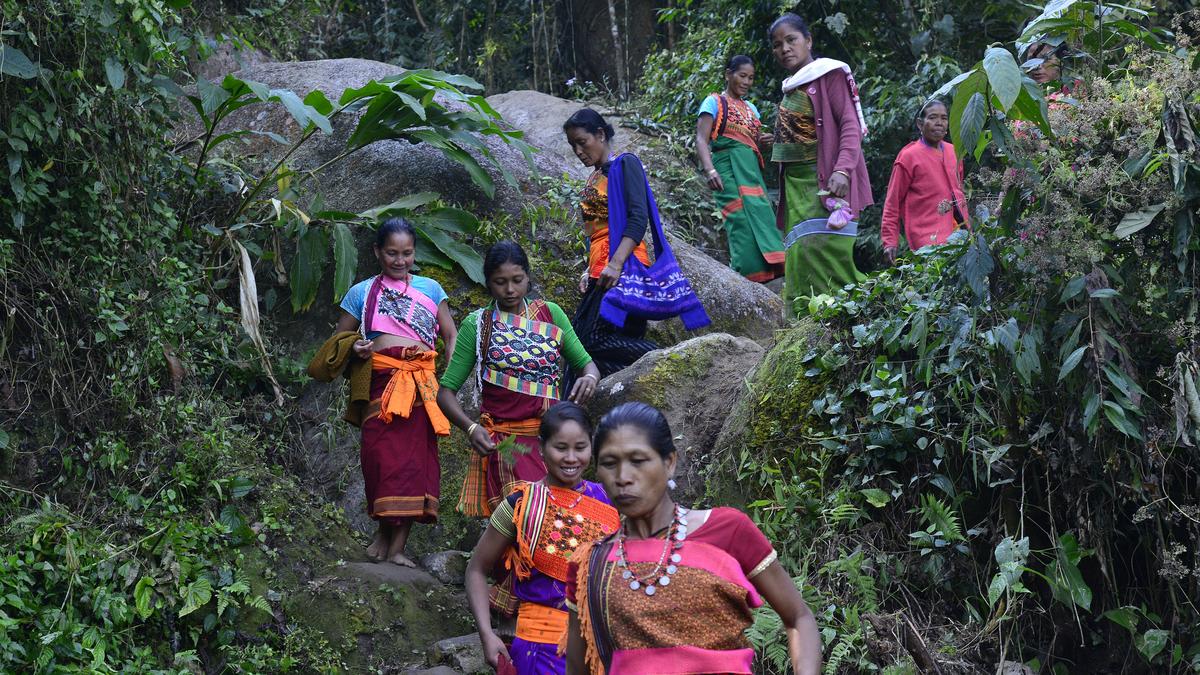
- 15 Feb 2025
In News:
The Gender Budget allocation for FY 2025-26 has increased to ?4.49 lakh crore, accounting for 8.86% of the total Union Budget, up from 6.8% in FY 2024-25. This represents a 37.25% increase compared to the ?3.27 lakh crore allocated in the previous year.
Key Highlights:
- Expansion Across Ministries:
- A total of 49 Ministries/Departments and 5 Union Territories (UTs) have reported allocations in the Gender Budget Statement (GBS) for 2025-26, marking the highest participation since the inception of the Gender Budget.
- Twelve new Ministries have been included in the GBS this year, signaling a broader inclusion of gender considerations in sectors such as animal husbandry, biotechnology, water resources, food processing, and railways.
- Gender Budget Allocation Breakdown:
- Part A (100% Women-specific schemes): ?1,05,535.40 crore (23.5% of total GBS).
- Part B (30-99% allocation for women): ?3,26,672 crore (72.75% of total GBS).
- Part C (Below 30% allocation for women): ?16,821.28 crore (3.75% of total GBS).
- Top Ministries reporting high percentages in gender-focused allocations include the Ministry of Women & Child Development (81.79%), Department of Rural Development (65.76%), and Department of Health & Family Welfare (41.10%).
- Focus on Women’s Economic Participation:
- The Union Budget aims to boost women’s participation in economic activities, targeting 70% by 2047.
- Women’s Labour Force Participation Rate (LFPR) rose to 42% in 2023-24 from 33% in 2021-22.
- Efforts to close the gender gap involve increased allocations to programs like Skill India, Deendayal Antyodaya Yojana-National Rural Livelihoods Mission (DAY-NRLM), and PM Vishwakarma, with 52% of the ?1.24 lakh crore allocated for these programs earmarked for women and girls.
- Support for Women Entrepreneurs:
- Women own 20.5% of micro, small, and medium enterprises (MSMEs) in India, employing approximately 27 million people.
- The Budget focuses on empowering women entrepreneurs by advocating for collateral-free loans, alternative credit scoring models, and financial literacy programs.
- Establishing 30 million additional women-owned businesses could generate 150-170 million jobs by 2030, contributing significantly to India's employment needs.
- Gig Economy and Informal Sector:
- The Budget introduces measures to formalize gig workers, 90% of whom are women. By issuing identity cards and registering gig workers on the e-Shram portal, the Budget aims to provide them with access to social security and financial inclusion benefits.
- This addresses the challenges faced by women in the informal sector, including low wages, job insecurity, and lack of maternity benefits.
- Gender Inclusivity in Technology:
- A dedicated ?600 crore allocation under the India AI Mission aims to promote gender inclusivity in the technology sector. This includes the establishment of a Centre of Excellence on Artificial Intelligence (AI) for education and skill development, ensuring women’s participation in high-growth technological fields.
- Gender Budgeting Components:
- Part A: Gender-specific expenditure, directly benefiting women (e.g., BetiBachaoBetiPadhao).
- Part B: Pro-women general expenditure, benefiting both men and women but focusing on women’s advancement (e.g., MGNREGA).
- Part C: Gender-neutral budgets that may require gender-sensitive planning (e.g., Har GharNal project, which reduces women’s time spent fetching water).
- Policy Vision and Challenges:
- The Union Budget for 2025-26 is part of the government’s vision for a "Viksit Bharat" with zero poverty, universal education, 100% skilled labor, and 70% female participation in the workforce by 2047.
- While the Budget lays a strong foundation, addressing persistent challenges like gender pay gaps, occupational segregation, and cultural barriers will require sustained policy interventions, gender-sensitive workplace reforms, and effective implementation of gender-disaggregated data for monitoring outcomes.
Corruption Perceptions Index (CPI) 2024
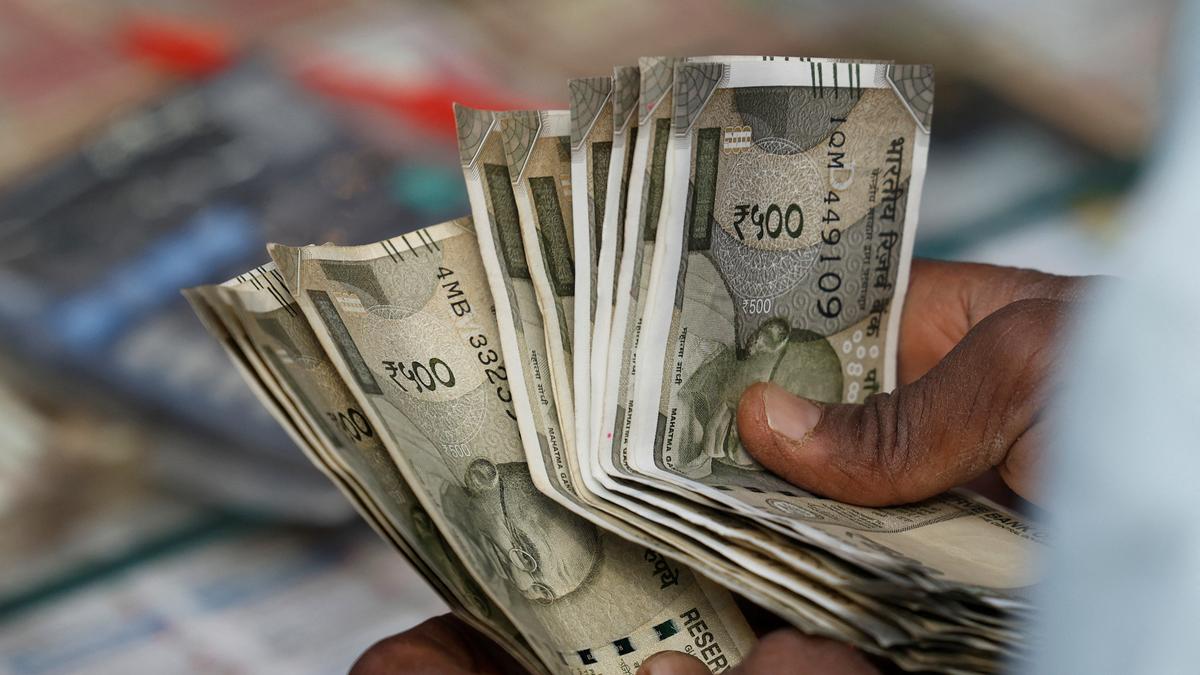
- 15 Feb 2025
In News:
India ranked 96th out of 180 countries in the Corruption Perceptions Index (CPI) for 2024, with a score of 38, a decline from 39 in 2023 and 40 in 2022. This indicates a worsening perception of corruption within India’s public sector.
Global Context:
- The CPI, compiled annually by Transparency International, is a widely recognized global ranking system that evaluates the perceived levels of corruption in public sectors.
- It uses a scale of 0 to 100, where 0 indicates highly corrupt and 100 signifies very clean.
- The CPI is based on expert assessments and surveys, drawing from at least three data sources out of 13 recognized corruption assessments from organizations like the World Bank and the World Economic Forum.
- Top Ranking Countries: Denmark topped the 2024 CPI, followed by Finland and Singapore, indicating strong governance systems with minimal corruption. These countries are recognized for their effective public sector governance, transparency, and low corruption levels.
- Regional Comparison: Among India’s neighbors, Pakistan ranked 135th, Sri Lanka at 121st, Bangladesh at 149th, and China ranked 76th, performing relatively better than India. The Asia-Pacific region, in general, saw a decline in its average CPI score, dropping by one point to 44.
- Global Trends: The CPI 2024 reveals troubling global trends, with corruption being a persistent issue worldwide. While 32 countries have significantly improved their corruption scores since 2012, 148 countries have either stagnated or worsened in the same period.
- The global average score remains at 43, with more than two-thirds of countries scoring below 50, signaling a widespread corruption problem.
- Corruption’s Impact on Climate Action: One of the significant findings in 2024 is the link between corruption and climate action. Corruption undermines efforts to combat climate change by misappropriating funds meant for emission reduction and climate adaptation projects.
- The report warns that such corruption obstructs effective policies and hinders climate change mitigation, leading to environmental degradation. Furthermore, it highlights that corruption in high-CPI countries often serves the interests of fossil fuel companies, complicating global climate efforts.
- Corruption and Human Rights: The report underscores that corruption not only impedes economic development but also contributes to the erosion of democracy, human rights violations, and instability. Corruption, particularly in the form of misallocation of resources, exacerbates the vulnerability of populations already affected by climate change, poverty, and human rights abuses.
- Financial Hubs and Illicit Funds: Many countries with high CPI scores, despite their lower domestic corruption levels, serve as financial hubs that attract illicit funds stemming from corruption and environmental damage. This "dirty money" exacerbates corruption on a global scale and has far-reaching consequences that extend beyond national borders.
- The Call for Action: Transparency International’s report stresses the need for global cooperation in tackling corruption. It warns that corruption is a major contributor to the rise of authoritarianism and calls for urgent, concrete action to address global corruption. The report emphasizes that combating corruption is crucial for achieving a peaceful, sustainable, and democratic world.
India’s Indigenous Shakti Semiconductor Chip

- 15 Feb 2025
In News:
India has achieved a significant milestone in semiconductor technology with the development of the indigenous Shakti semiconductor chip. Developed by the Indian Institute of Technology (IIT) Madras in collaboration with the Indian Space Research Organisation (ISRO) and supported by the Ministry of Electronics and Information Technology (MeitY), the Shakti chip is a crucial component of India’s push for technological self-reliance under the Digital India RISC-V (DIRV) initiative.
Overview of Shakti Semiconductor Chip
- The Shakti chip is an indigenous microprocessor based on the RISC-V open-source Instruction Set Architecture (ISA).
- Its primary objective is to meet the high-performance computing, security, and reliability needs of India’s defense, aerospace, and space industries.
- It was specifically designed to support applications in satellite missions, avionics, embedded systems, and command-and-control operations.
- The chip is the third in the Shakti series, following the earlier RIMO (2018) and MOUSHIK (2020) chips, which served as technology demonstrators.
Key Features:
- Indigenous Development: Fully developed, fabricated, and tested in India, ensuring complete control over the design and manufacturing process.
- RISC-V Architecture: The Shakti chip utilizes the RISC-V open-source architecture, offering flexibility for customization and adaptation to various hardware and application needs.
- Fault Tolerant and Reliable: Designed to endure the harsh conditions of space and defense applications, making it highly reliable for mission-critical functions.
- High-Performance Computing: Supports complex functions like AI-based operations, real-time control systems, and sensor integration, essential for space missions and advanced defense technologies.
- Advanced Security: Aimed at providing robust security measures for critical sectors, including defense and aerospace, ensuring protection against cyber threats.
- Expandable and Scalable: The chip supports multiple boot modes and hybrid memory extensions, allowing for future upgrades and expansions, especially for space exploration.
Applications of the Shakti Chip
- Space Missions: The Shakti chip plays a vital role in powering ISRO's command-and-control systems, satellite avionics, and embedded systems used in various space missions.
- Defense & Aerospace: It enhances India’s strategic autonomy by reducing reliance on foreign semiconductor technology for military-grade electronics.
- IoT & AI Applications: The chip’s high-performance computing capabilities are ideal for smart systems, the Internet of Things (IoT), and AI applications.
- Research and Development: The chip contributes significantly to India’s semiconductor ecosystem, providing a foundation for further R&D in indigenous chip fabrication.
The Digital India RISC-V (DIRV) Initiative
- Launched in April 2022 by MeitY, the DIRV initiative aims to strengthen India’s semiconductor ecosystem by promoting the development of indigenous RISC-V-based microprocessors.
- The initiative emphasizes reducing dependency on foreign semiconductor solutions and fostering self-reliance in the digital sector.
- DIRV also focuses on high-performance computing for emerging technologies such as 5G, AI, and cloud computing. Through collaborations with IITs, ISRO, C-DAC, and private industry partners, the program aims to create a robust ecosystem for scalable microprocessor solutions.
IRIS: A Key Development from Shakti
- One of the most notable outputs of the Shakti chip initiative is the IRIS (Indigenous RISC-V Controller for Space Applications).
- Developed for ISRO’s space missions, the IRIS chip is a high-performance, fault-tolerant, 64-bit processor based on the Shakti microprocessor.
- It has been designed to meet the specific needs of space missions, such as satellite command-and-control systems, by integrating custom modules like watchdog timers and advanced serial buses.
- The IRIS chip also features multiple boot modes and hybrid memory extensions for future scalability and expansion in line with upcoming space missions.
Market Intervention Scheme (MIS)
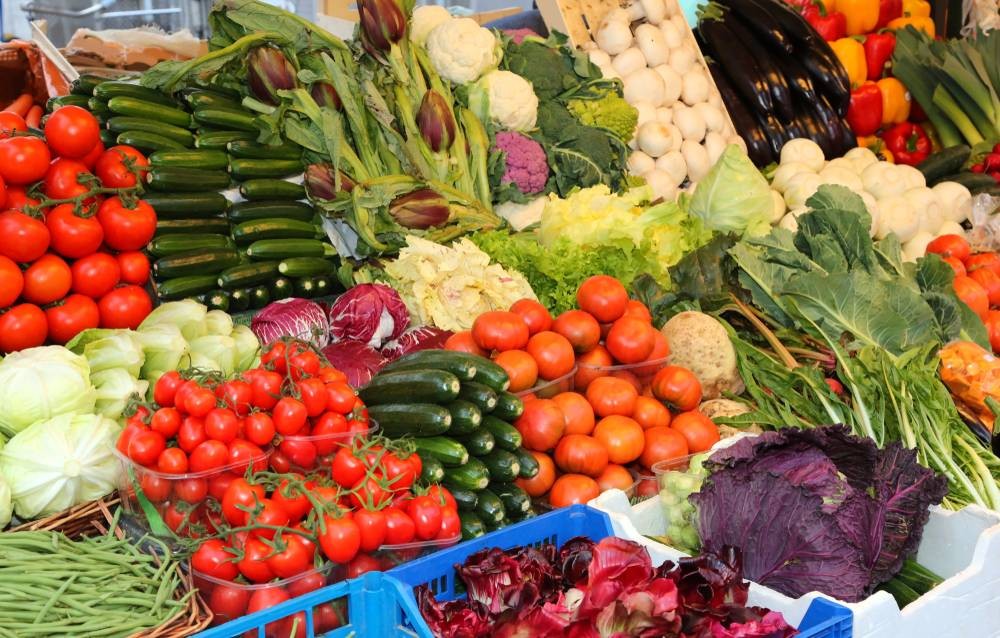
- 14 Feb 2025
In News:
To enhance the efficacy and wider adoption of MIS, the Government of India revised the guidelines in 2025.
Key Highlights:
- Objective: It aims to provide price support for perishable agricultural and horticultural commodities not covered under the Minimum Support Price (MSP) regime. It prevents distress sales during periods of excessive production and sharp price declines.
- Implementing Authority:The scheme is under the Department of Agriculture & Farmers’ Welfare and is now a component of the PM-AASHA (Pradhan Mantri AnnadataAaySanrakshan Abhiyan) umbrella scheme.
- Eligibility & Activation:
- Implemented on the request of State/UT Governments.
- Triggered when market prices fall by at least 10% compared to the average price of the previous normal year.
- Nature of the Scheme:
- Ad-hoc price support mechanism operational during sudden market crashes.
- Cost-sharing pattern between Centre and States is 50:50, and 75:25 for North-Eastern states.
- Procurement Provisions (Revised 2025):
- Procurement limit increased from 20% to 25% of total production of the crop.
- Direct Benefit Transfer (DBT) mode introduced: States may directly compensate farmers for the price difference between Market Intervention Price (MIP) and actual selling price.
- Physical procurement is optional under the revised scheme.
- Authorized Procurement Agencies:
- Central Nodal Agencies like NAFED (National Agricultural Cooperative Marketing Federation of India) and NCCF (National Cooperative Consumers’ Federation of India).
- Farmer Producer Organizations (FPOs), Farmer Producer Companies (FPCs), and state-nominated agencies can also participate in procurement, storage, and transportation.
- Support for Transportation and Storage:
- Reimbursement of storage and transport costs is provided by Central Nodal Agencies for TOP crops (Tomato, Onion, Potato).
- This provision helps balance regional price disparities between producing and consuming states.
- Significance:
- The revamped MIS strengthens market resilience for perishable crop producers.
- Enhances State participation, reduces post-harvest losses, and ensures remunerative returns through institutional and technological support mechanisms.
NITI Aayog Policy Report on Expanding Quality Higher Education
- 14 Feb 2025
In News:
NITI Aayog released a comprehensive policy report titled ‘Expanding Quality Higher Education through States and State Public Universities (SPUs)’, focusing on the development of higher education institutions, particularly public universities in India.
The report aims to enhance the quality, funding, governance, and employability outcomes within SPUs, which contribute to around 80% of the country's higher education system.
The document, the first of its kind in India, presents a detailed analysis of vital indicators like quality, funding, financing, governance, and employability over the last decade, supported by stakeholder consultations with over 20 states and Union Territories, Vice Chancellors, academicians, and State Higher Education Council Chairs. The report includes nearly 80 policy recommendations, along with 125 performance indicators, aiming to address long-standing challenges within SPUs.
Key Findings from the Report
- Funding:
- Maharashtra leads in funding for higher education, with Bihar and Tamil Nadu following closely behind.
- On the other hand, states like Sikkim, Arunachal Pradesh, and Nagaland have the lowest funding for higher education, highlighting regional disparities.
- University Density:
- The national average university density is 0.8 universities per lakh population. However, states such as Sikkim, with a density of 10.3, and Arunachal Pradesh, Ladakh, Meghalaya, and Uttarakhand have significantly higher densities. In contrast, states like Bihar, Uttar Pradesh, West Bengal, and Maharashtra have lower densities compared to the national average.
- Female Enrolment:
- Kerala, Chhattisgarh, and Himachal Pradesh have achieved higher female enrolment rates than males, which reflects positive gender inclusivity trends in certain regions.
- Challenges:
- Infrastructure deficits, including a lack of quality facilities and resources.
- A shortage of faculty and staff, particularly in advanced fields such as MTech and Ph.D. levels.
- Insufficient investment in research and development (R&D).
- Outdated courses, syllabi, and curricula, which are not aligned with industry needs.
- Financial constraints due to over-reliance on traditional revenue sources like admission fees and state grants.
- Administrative delays in fund sanctioning and the absence of frameworks for securing loans through financial institutions.
Policy Recommendations
The report proposes several reforms to address the aforementioned challenges, with a focus on improving educational quality, securing better funding, enhancing governance, and boosting employability:
- Funding and Investment:
- Increase the combined investment in education to 6% of GDP, as recommended in the National Education Policy (NEP) 2020.
- Increase R&D investment (both public and private) to 2% of GDP, as recommended in the Economic Survey 2017-18.
- Creating Centers of Excellence:
- SPUs should form clusters and focus on addressing local challenges by establishing Centres of Excellence. These centres should focus on region-specific issues to drive academic and practical advancements.
- Governance Reforms:
- Enhance governance structures at SPUs, empowering Vice Chancellors, faculty, and staff through targeted capacity-building initiatives.
- States may consider setting up dedicated finance agencies, similar to the Higher Education Financing Agency (HEFA), to fund infrastructure and research development specifically for SPUs.
- Financial Innovations:
- Develop financial frameworks to increase investment in education, ensuring access to timely funds, and reducing dependency on state grants or admission fees.
- Industry-Academia Collaboration:
- Strengthen the link between academia and industry to ensure that the curricula are relevant and prepare students for the job market. This can be achieved through increased partnerships, internships, and practical learning opportunities.
Pradhan Mantri AnusuchitJaatiAbhyuday Yojana (PM-AJAY)
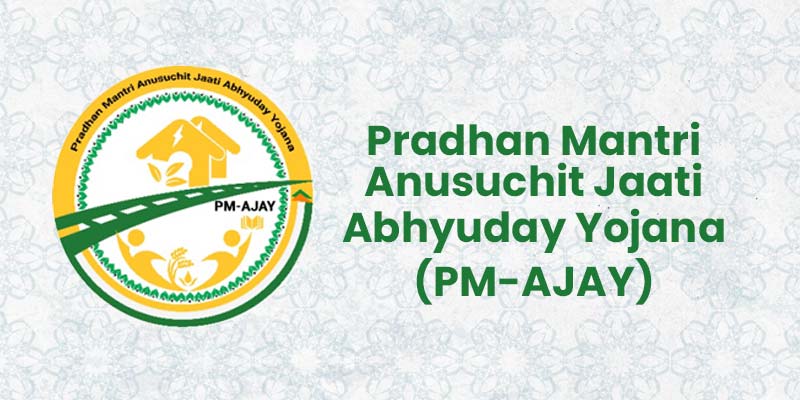
- 14 Feb 2025
In News:
It is a 100% Centrally Sponsored Scheme initiated by the Ministry of Social Justice and Empowerment. The scheme aims at the socio-economic upliftment of the Scheduled Caste (SC) communities, particularly targeting the reduction of poverty through various initiatives that focus on skill development, infrastructure, and income-generating projects.
Key Highlights:
- Launch and Funding: Launched in 2021, the scheme is fully funded by the central government, though states and Union Territories (UTs) have the option to contribute additional funds from their own resources. PM-AJAY is the consolidation of three pre-existing schemes:
- Pradhan Mantri Adarsh Gram Yojana (PMAGY)
- Special Central Assistance to Scheduled Castes Sub Plan (SCA to SCSP)
- BabuJagjivan Ram Chhatrawas Yojana (BJRCY)
- Objectives of PM-AJAY: The scheme is focused on improving the overall well-being of SC communities by:
- Reducing poverty through income-generating schemes, skill development, and infrastructure projects.
- Promoting social and economic development by improving literacy rates, educational enrolment, and providing better livelihood opportunities.
- Transforming SC-majority villages into model villages with integrated development, enhancing socio-economic indicators like education, healthcare, and financial inclusion.
- Eligibility Criteria
- Scheduled Caste (SC) persons living below the poverty line (BPL) are eligible for benefits.
- For infrastructure development, villages with 50% or more SC population are prioritized for grants.
- Key Components of PM-AJAY: The scheme comprises three core components:
- Adarsh Gram Development (formerly PMAGY): Aims to develop SC-majority villages into model villages with holistic improvements in education, healthcare, infrastructure, and skill development.
- Grants-in-Aid for District/State-Level Projects (formerly SCA to SCSP): Financial assistance is provided for livelihood development projects, including skill development programs and infrastructure projects, to generate sustainable income for SC communities.
- Construction of Hostels in Higher Educational Institutions (formerly BJRCY): Focuses on promoting higher education among SC students by constructing hostels in top-ranked institutions according to the National Institutional Ranking Framework (NIRF). This aims to reduce dropout rates and enhance access to quality education.
Special Provisions under the Grants-in-Aid Component
- 15% of the total grants are exclusively allocated for income-generating schemes for SC women.
- 30% of the grants are allocated for infrastructure development in SC-dominated areas.
- 10% of funds are reserved for skill development programs.
- The scheme encourages the formation of SC women cooperatives for producing and marketing consumer goods and services.
Achievements (2022-23)
- 1,260 villages were declared as Adarsh Gram in the financial year 2023-24 under the Adarsh Gram component.
- Nine new hostels were sanctioned under the Hostel Construction component.
- Perspective plans for seven states were approved under the Grants-in-Aid component.
Restructured National Bamboo Mission (NBM)
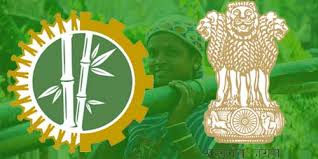
- 12 Feb 2025
In News:
The National Bamboo Mission (NBM) was initially launched in 2006 under the Ministry of Agriculture & Farmers Welfare to promote bamboo-based development. Between 2014–2016, it was subsumed under the Mission for Integrated Development of Horticulture (MIDH).
In 2018-19, it was restructured under the National Mission for Sustainable Agriculture (NMSA) as a Centrally Sponsored Scheme (CSS) to revamp bamboo cultivation, processing, and value chain integration.
A key reform was the 2017 amendment to the Indian Forest Act, 1927, which removed bamboo grown outside forests from the definition of “tree.” This de-regulated its felling and transit, boosting private bamboo farming and easing trade.
Objectives
- Increase the availability of quality planting materials and expand area under bamboo cultivation, especially in non-forest land.
- Promote post-harvest management, primary treatment, seasoning, and preservation technologies.
- Develop market infrastructure, incubation centers, and tools & equipment for value addition.
- Encourage value-added product development, skill development, and entrepreneurship.
- Reduce import dependency on bamboo and bamboo-based products.
Funding Pattern
- General States: 60% Central and 40% State funding.
- Northeastern & Hilly States: 90% Central and 10% State.
- Union Territories, BTSGs & National Level Agencies: 100% Central funding.
Implementation Framework
- Implemented through the State Nodal Departments, nominated by respective State/UT governments.
- Notable example: Bareilly Bamboo Cluster operational in Shahjahanpur district, Uttar Pradesh, since 2019-20, with activities like nursery establishment, bamboo plantation, skill development, and bamboo product demonstration.
Bamboo – Ecological & Economic Significance
- Botanical Classification: Grass (Family: Poaceae, Subfamily: Bambusoideae), ~115 genera and ~1,400 species globally.
- Native to tropical, subtropical, and mild temperate zones, with highest concentration in East and Southeast Asia.
Properties & Applications:
- Carbon Sequestration: Produces 35% more oxygen than comparable vegetation; acts as a natural carbon sink.
- Climate Adaptability: Thrives in degraded lands; prevents soil erosion; vital for land restoration.
- Alternative Energy Source: Among the fastest-growing plants (up to 90 cm/day); can substitute fossil fuels.
- Food & Medicine: Bamboo shoots are consumed in Northeast India; roots and parts used in traditional medicine.
- Livelihood Support: Flexible harvest cycles provide year-round income for farmers.
Bamboo Production Status in India
- 18,000+ inventoried grids reported bamboo presence between 2016–17 to 2019–20.
- Estimated total bamboo culms: 53,336 million.
- 35.19% increase in bamboo culms from ISFR 2019 to ISFR 2021 (an increase of 13,882 million culms).
Restructured Skill India Programme (2022–2026)
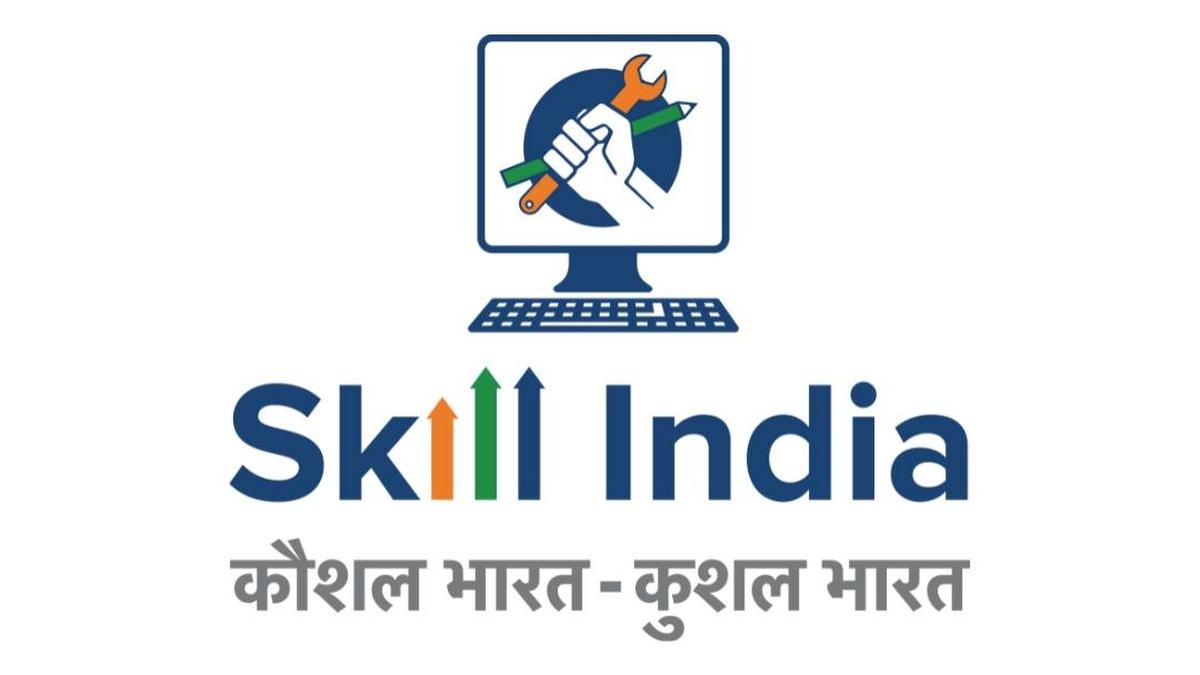
- 12 Feb 2025
In News:
The Union Cabinet has approved the continuation and restructuring of the Skill India Programme (SIP) till March 2026, with a financial outlay of ?8,800 crore.
The revamped programme consolidates three flagship schemes under a composite Central Sector Scheme—Pradhan Mantri Kaushal Vikas Yojana 4.0 (PMKVY 4.0), Pradhan Mantri National Apprenticeship Promotion Scheme (PM-NAPS), and Jan ShikshanSansthan (JSS)—with the aim to build a skilled, future-ready workforce.
Objectives and Vision
- Strengthen workforce development through industry-aligned, technology-enabled, and demand-driven skill training.
- Enhance global competitiveness, promote international mobility, and align with India's economic priorities such as Atmanirbhar Bharat, Make in India, and Digital India.
- Enable lifelong learning, skilling, reskilling, and upskilling through inclusive, flexible, and community-based training.
Beneficiaries and Coverage
- Over 2.27 crore individuals have benefited so far.
- Targeted age groups vary across schemes:
- PMKVY 4.0: 15–59 years
- PM-NAPS: 14–35 years
- JSS: 15–45 years
- Emphasis on marginalized sections, women, rural youth, aspirational districts, and the North-East Region.
Key Components of the Restructured Programme
1. Pradhan Mantri Kaushal Vikas Yojana 4.0 (PMKVY 4.0)
- Offers NSQF-aligned training via:
- Short-Term Training (STT)
- Special Projects (SP)
- Recognition of Prior Learning (RPL)
- Introduces 400+ new courses in emerging fields:
- Artificial Intelligence (AI), 5G, Cybersecurity, Green Hydrogen, Drone Technology.
- Establishment of Skill Hubs in premier institutions (IITs, NITs, JNVs, KendriyaVidyalayas, etc.).
- Focus on international mobility:
- Mobility Partnership Agreements (MMPAs), joint certifications, and language proficiency training.
- Blended learning models with digital delivery and regional language content.
- Integration with schemes such as PM Vishwakarma, PM Surya GharMuft Bijli Yojana, National Green Hydrogen Mission, and NAL JAL Mitra.
- Adoption of an Ease of Doing Business framework to reduce compliance burdens.
2. Pradhan Mantri National Apprenticeship Promotion Scheme (PM-NAPS)
- Promotes earn-while-you-learn through industry-specific apprenticeships.
- Government support of 25% stipend (up to ?1,500/month per apprentice) via Direct Benefit Transfer (DBT).
- Focus on both traditional and emerging sectors like AI, robotics, blockchain, green energy, and Industry 4.0.
- Encourages participation of MSMEs and enterprises in underserved regions.
3. Jan ShikshanSansthan (JSS) Scheme
- Community-based skilling for economically disadvantaged, rural youth, and women.
- Offers low-cost, flexible, doorstep training for both self-employment and wage-based livelihoods.
- Linked with initiatives such as PM JANMAN, ULLAS, and financial literacy campaigns.
- Also promotes awareness in health, hygiene, gender equality, and education.
Certification and Digital Integration
- All certifications are aligned with the National Skills Qualification Framework (NSQF).
- Integrated with DigiLocker and the National Credit Framework (NCrF), ensuring:
- Formal recognition of skills.
- Horizontal and vertical mobility in education and employment.
- Micro-credential courses (7.5 to 30 hours) and National Occupational Standards (NoS)-based training introduced.
Supporting Schemes and Initiatives
- SANKALP(Skill Acquisition and Knowledge Awareness for Livelihood Promotion).
- TEJAS (Skilling for international placement).
- Model Skill Loan Scheme.
Significance of Skill India Programme
- Demographic Dividend: With over 65% of India’s population below 35, the programme is pivotal in transforming potential into productivity.
- Employment & Entrepreneurship: Reduces unemployment through structured training, apprenticeships, and encourages skill-based startups.
- Global Workforce Readiness: Aligns with international standards, enabling Indian workers to access global job markets.
- Technological Preparedness: Equips the youth with skills in futuristic technologies.
- Inclusive Growth: Ensures urban-rural and gender-based equity in skilling access.
- Economic Impact: Supports India's manufacturing, IT, and services sectors, driving GDP growth.
India Achieves 100 GW Solar Power Capacity
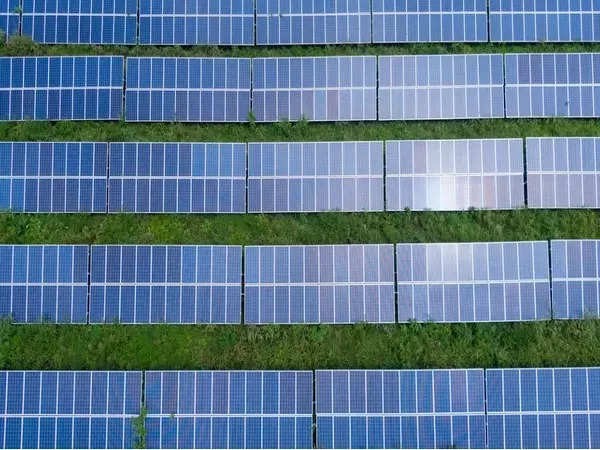
- 12 Feb 2025
In News:
India has officially surpassed 100 GW of installed solar power capacity as of January 31, 2025, marking a historic milestone in its clean energy journey. This achievement strengthens India’s position as a global leader in renewable energy and signifies major progress toward its ambitious target of 500 GW non-fossil fuel capacity by 2030, as outlined by Prime Minister Narendra Modi.
Union Minister of New and Renewable Energy, highlighted this milestone as a testament to India’s energy self-reliance, driven by key initiatives such as solar parks, rooftop solar schemes, and domestic solar manufacturing.
Growth Trajectory and Achievements
- Installed Capacity Growth:
- From 2.82 GW in 2014 to 100.33 GW in 2025 – a growth of 3450% over a decade.
- Solar energy now accounts for 47% of India’s total installed renewable energy capacity.
- Capacity Pipeline:
- 84.10 GW of solar under implementation.
- 47.49 GW under tendering.
- Including hybrid and RTC renewable projects, India has 296.59 GW of solar and hybrid projects in total.
- Record Additions in 2024:
- 24.5 GW solar capacity added, more than double from 2023.
- 18.5 GW utility-scale installations – a 2.8 times increase from 2023.
- 4.59 GW of rooftop solar added, a 53% increase over 2023.
- Top States in utility-scale solar growth:Rajasthan, Gujarat, Tamil Nadu, Maharashtra, and Madhya Pradesh.
Solar Manufacturing Boom
- Solar module production capacity has grown from 2 GW (2014) to 60 GW (2024).
- With continued policy support, India is targeting 100 GW of manufacturing capacity by 2030.
- This shift makes India a global hub for solar technology and reduces reliance on imports.
Major Government Initiatives Driving Solar Growth
- National Solar Mission (NSM) (2010):Set long-term targets, with 280 GW of solar capacity by 2030 under its ambit.
- PM SuryaGharMuft Bijli Yojana (2024):
- A game-changing rooftop solar scheme aiming to empower households with free, clean electricity.
- Nearly 9 lakh rooftop installations as of early 2025.
- PM-KUSUM Scheme:Promotes solar irrigation pumps and supports farmers with grid-connected solar systems.
- Solar Parks Scheme:Facilitates development of large-scale solar clusters in states to boost capacity.
- Production-Linked Incentive (PLI) Scheme:Incentivizes domestic manufacturing of solar PV modules.
- Net Metering Policy:Allows consumers to generate and export surplus solar power to the grid.
- International Solar Alliance (ISA):India-led global initiative fostering solar energy cooperation among solar-rich countries.
Benefits of Solar Energy for India
- Energy Security: Reduces dependence on fossil fuel imports.
- Environmental Gains: Cuts GHG emissions and combats climate change.
- Economic Boost: Millions of jobs created across installation, manufacturing, and maintenance.
- Affordability: Declining PV costs make solar a cost-effective energy source.
- Rural Electrification: Powers remote and off-grid regions, improving livelihoods.
Challenges and the Way Forward
- Land Acquisition: Scarcity of land hinders large-scale solar deployment.
- Grid Integration: Intermittency of solar power stresses the existing power grid.
- Finance & Investment: Scaling up infrastructure and storage requires sustained capital inflow.
- Storage Solutions: Affordable battery storage is essential for reliability and round-the-clock supply.
TROPEX-25
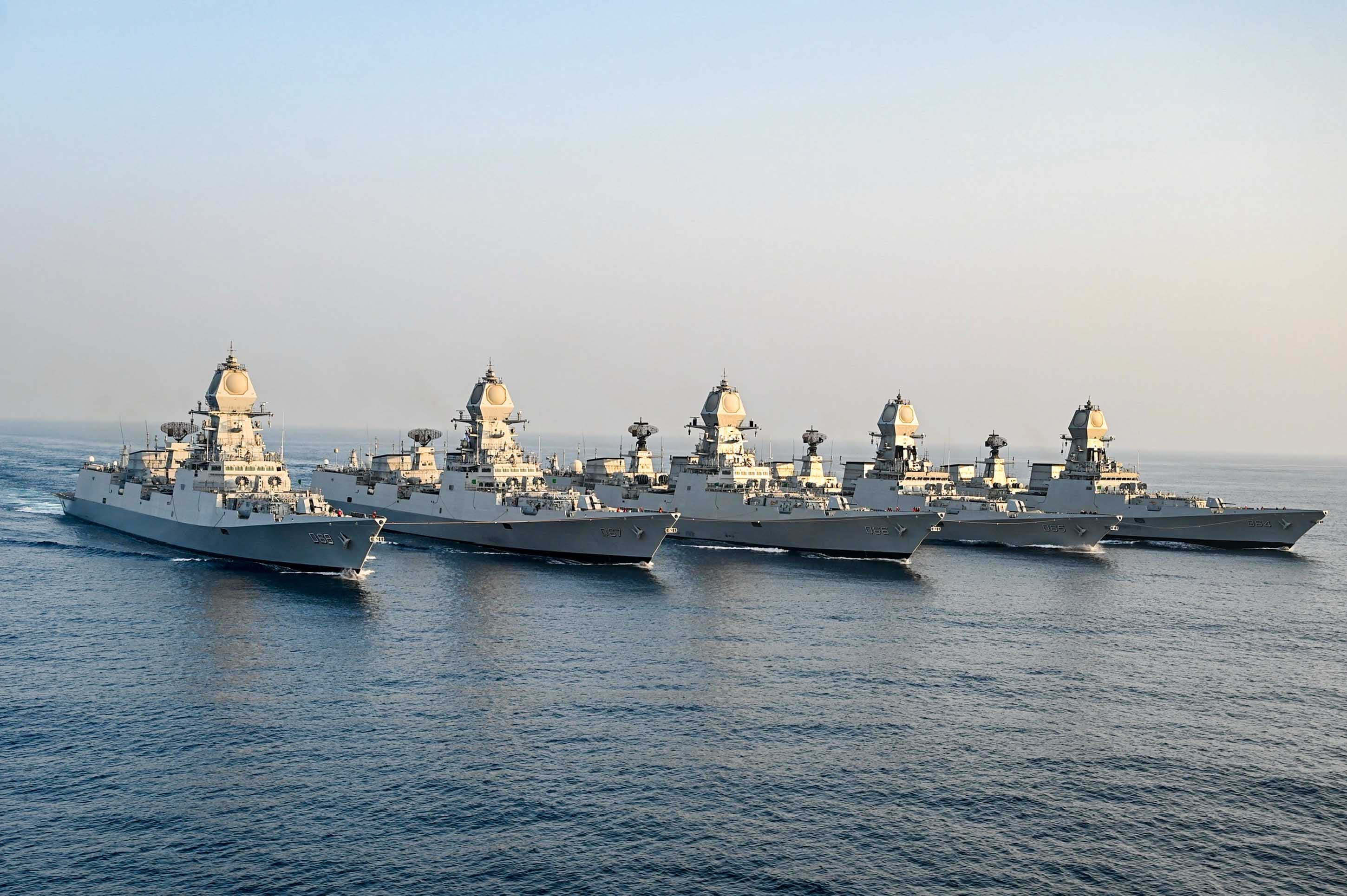
- 12 Feb 2025
In News:
The Indian Navy’s biennial TROPEX-25is currently underway in the Indian Ocean Region (IOR) from January to March 2025.
It is the Indian Navy’s largest maritime exercise, aimed at testing combat readiness and integrated warfighting capabilities across all domains.
About TROPEX
- Full Form: Theatre Level Operational Readiness Exercise (TROPEX)
- Frequency: Biennial (every two years)
- Lead Agency: Indian Navy
- Participants:
- Indian Navy (all operational units)
- Indian Army (IA)
- Indian Air Force (IAF)
- Indian Coast Guard (ICG)
Purpose and Strategic Objectives
TROPEX-25 aims to:
- Validate core warfighting skills of the Indian Navy.
- Ensure a synchronised, integrated response across services to defend India’s maritime interests.
- Simulate real-time operations in a contested maritime environment, including conventional, asymmetric, and hybrid threats.
- Enhance jointness, interoperability, and combat synergy among the three armed forces and the Coast Guard.
Duration and Operational Scope
- Timeline: January to March 2025 (Three months)
- Location: Various sectors across the Indian Ocean Region (IOR)
- Phases:
- Harbour Phase: Planning and coordination activities.
- Sea Phase: Execution of complex naval and joint operations.
- Joint Work-Up Phase: Includes cyber and electronic warfare, and live weapon firings.
- AMPHEX (Amphibious Exercise): Integrated amphibious operations.
Key Features
- Integrated Combat Operations: Real-time execution of multi-domain missions
- Cyber and Electronic Warfare: Tactical simulations of modern non-kinetic threats
- Live Weapon Firings: Enhancing target precision and battle readiness
- Inter-Service Jointness: High-level coordination across the Navy, Army, Air Force, and Coast Guard
- Maritime Domain Awareness: Surveillance and security operations over vast maritime stretches
Strategic Significance
- Reinforces India’s commitment to safeguarding maritime sovereignty and strategic interests in the Indian Ocean.
- Enhances forward-deployment strategies, logistics, and sustained operations far from the mainland.
- Demonstrates India’s ability to operate “Anytime, Anywhere, Anyhow” in support of national security.
Prime Minister’s 15-Point Programme for Minorities
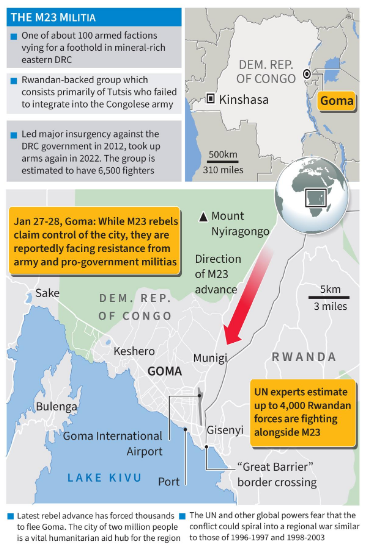
- 11 Feb 2025
In News:
The Prime Minister’s New 15 Point Programme for welfare of Minorities is a programme which covers various schemes/initiatives of the participating Ministries/Departments with an aim to ensure that the underprivileged and weaker sections of six centrally notified minority communities have equal opportunities for availing the various Government welfare Schemes and contribute to the overall socio-economic development of the Country.
Key Highlights:
The programme has the following broad objectives:
- Enhancing opportunities for education
- Ensuring an equitable share for minorities in economic activities and employment, through existing and new schemes, enhanced credit support for self-employment, and recruitment to State and Central Government jobs
- Improving the conditions of living of minorities by ensuring an appropriate share for them in infrastructure development schemes
- Prevention and control of communal disharmony and violence.
The schemes of the Ministry of Minority Affairs covered under the Prime Minister’s 15 Point Programme are exclusively meant for notified minorities. However, 15% of the outlays and targets, to the extent possible, of schemes/initiatives implemented by other participating Ministries/Departments are earmarked for notified minorities.
The welfare schemes, including initiatives for education and skill development of minorities, being implemented by Ministry of Minority Affairs and other participating ministries under the programme, are as under:
- Pre-Matric Scholarship Scheme
- Post-Matric Scholarship Scheme
- Merit-cum- Means based Scholarship Scheme
- National Minorities Development Finance Corporation (NMDFC) Loan Schemes
- Samagra Shiksha Abhiyaan (M/o Education)
- DeenDayalAntyodaya Yojana (DAY-NRLM)- (M/o Rural Development)
- DeenDayal Upadhyay – GraminKaushalya Yojana (M/o Rural Development)
- Pradhan Mantri Awaas Yojana (M/o Rural Development)
- DeenDayalAntyodaya Yojana - National Urban Livelihoods Mission (M/o Housing & Urban Affairs)
- Priority Sector Lending by Banks (Department of Financial Services)
- Pradhan Mantri Mudra Yojana (Department of Financial Services)
- POSHAN Abhiyaan (Ministry of Women & Child Development)
- National Health Mission (Department of Health & Family Welfare)
- Ayushman Bharat (Department of Health & Family Welfare)
- National Rural Drinking Water Programme (Jal Jeevan Mission), (Department of Drinking Water & Sanitation)
The Schemes are being implemented by the respective Ministries/Departments under the saturation approach of Government. Under the saturation approach of the Government many of the components have achieved mainstreaming.
National Commission for SafaiKaramcharis (NCSK)
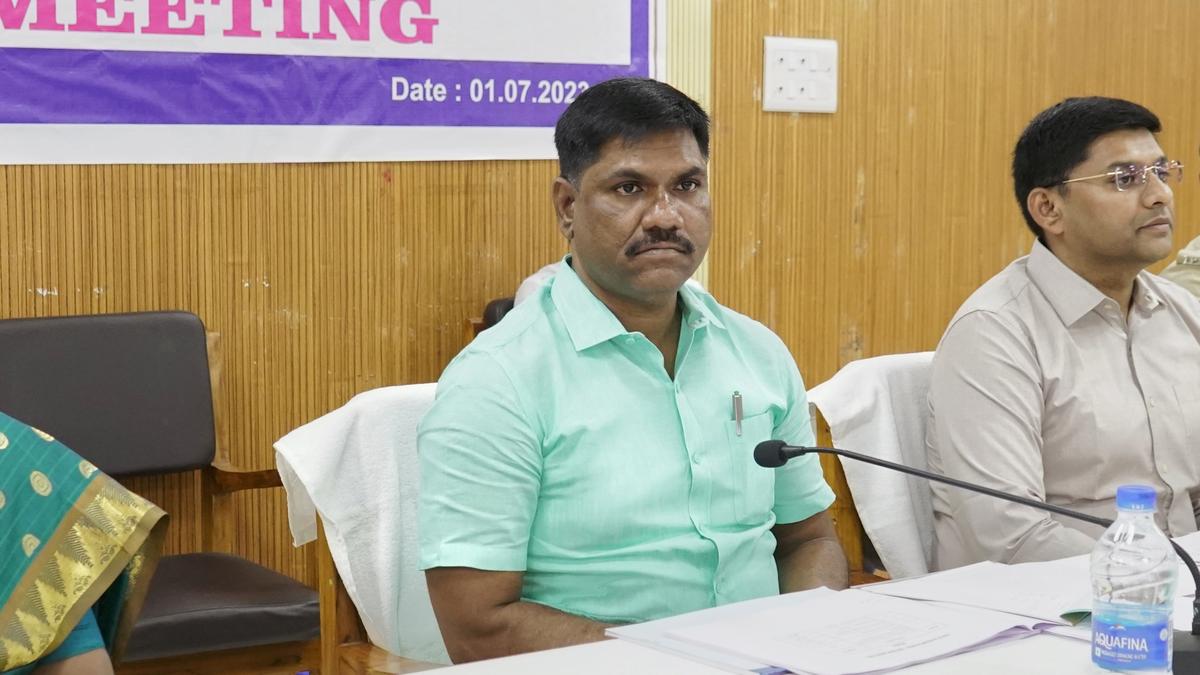
- 11 Feb 2025
In News:
The Union Cabinet, on February 7, 2025, approved the extension of the tenure of the National Commission for SafaiKaramcharis (NCSK) for three years beyond March 31, 2025, i.e., up to March 31, 2028.
The move is aimed at sustaining efforts to eradicate manual scavenging, improve the welfare of sanitation workers, and achieve zero fatalities in hazardous cleaning activities. The extension involves a financial outlay of ?50.91 crore.
Background and Legal Status
- Constitution: NCSK was established in August 1994 under the National Commission for SafaiKaramcharis Act, 1993 as a statutory body.
- Post-2004 Status: The statutory Act lapsed in 2004, and since then, NCSK has functioned as a non-statutory body under the Ministry of Social Justice and Empowerment, with periodic extensions.
- Current Demand: The current Chairperson, M. Venkatesan, has welcomed the extension but stressed the need for granting statutory status to the commission to enhance its authority and effectiveness.
Mandate and Functions
As per Government Notification and MS Act, 2013:
- Policy Recommendations:Recommend specific programmes of action to eliminate inequalities in the status, facilities, and opportunities of SafaiKaramcharis.
- Monitoring and Evaluation:
- Study and evaluate implementation of welfare schemes and programmes.
- Monitor working conditions, including health, safety, and wages of sanitation workers.
- Grievance Redressal:
- Investigate specific complaints and take suomotu cognizance of non-implementation of policies or schemes related to SafaiKaramcharis.
- Report to governments on issues affecting SafaiKaramcharis.
- Role under the Prohibition of Employment as Manual Scavengers and their Rehabilitation Act, 2013:
- Monitor the implementation of the Act.
- Enquire into violations, and convey findings with recommendations to authorities.
- Advise the Centre and States on effective implementation.
- Take suomotu notice of non-compliance.
- Data Collection:
- NCSK remains the only national body tracking sewer and septic tank deaths.
Significance of the Extension
- Aims to improve working conditions in the sanitation sector.
- Supports the socio-economic upliftment of one of the most marginalized communities in India.
- Enhances implementation of manual scavenging prohibition laws.
- Facilitates rehabilitation and dignity for sanitation workers.
- Aligns with the broader vision of inclusive development and social justice.
Tribal Welfare in Union Budget 2025–26
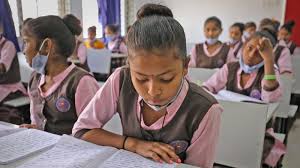
- 09 Feb 2025
In News:
India is home to over 10.45 crore Scheduled Tribe (ST) individuals, comprising 8.6% of the population. Concentrated largely in remote and underdeveloped regions, ST communities face persistent challenges such as land alienation, limited access to quality education, healthcare deficits, and socio-economic exclusion. The Union Budget 2025–26 signals a paradigm shift in tribal welfare, in line with the vision of Viksit Bharat.
Budgetary Commitment
The total allocation for tribal welfare has risen to ?14,925.81 crore in 2025–26—a 45.79% jump from the previous year and a staggering 231.83% increase from 2014–15 levels. The Ministry of Tribal Affairs has witnessed a consistent rise in budget: from ?7,511.64 crore (2023–24) to ?10,237.33 crore (2024–25), and now ?14,925.81 crore.
Flagship Schemes and Initiatives
- Eklavya Model Residential Schools (EMRS) received ?7,088.60 crore, up from ?4,748 crore, to provide quality residential education to ST students. EMDBS, a pilot initiative in high-density tribal areas, enhances outreach.
- Pradhan Mantri Janjatiya Vikas Mission (PMJVM) saw a sharp rise to ?380.40 crore. It promotes tribal entrepreneurship, sustainable Minor Forest Produce (MFP) use, and value chain development.
- Pradhan Mantri Adi Adarsh Gram Yojana (PMAAGY) was allocated ?335.97 crore (163% increase). It aims to convert tribal-majority villages into model habitations by ensuring convergence of development schemes.
- PM-JANMAN Multi-Purpose Centers (MPCs) received ?300 crore, targeting Particularly Vulnerable Tribal Groups (PVTGs) with essential services and institutional support.
- Dharti Aaba Janjatiya Gram Utkarsh Abhiyan (DAJGUA), launched in 2024, envisions the holistic development of 63,843 tribal villages. With an outlay of ?79,156 crore over five years, it integrates 17 ministries and 25 interventions. The Ministry of Tribal Affairs has allocated ?2,000 crore for 2025–26 alone.
Persistent Challenges
Despite constitutional safeguards (Articles 15(4), 46, 244, 275(1), etc.), tribal communities face significant hurdles:
- Land and Resource Rights: Only 50% of 42.76 lakh Forest Rights Act (FRA) claims have been approved (MoTA, 2022). Displacement from mining and infrastructure projects persists.
- Education: ST literacy stands at 59% (Census 2011) with high dropout rates due to poverty and language gaps.
- Health: Malnutrition, maternal mortality, and diseases like Sickle Cell remain endemic.
- Marginalization: Tribals face economic deprivation, exploitation (bonded labor, trafficking), and erosion of cultural identity.
- Underrepresentation: Despite reserved seats, policy influence remains limited.
The Way Forward
- Land Rights: Effective implementation of FRA and safeguards against forced displacement.
- Education: Expand EMRS/EMDBS and promote bilingual, culturally relevant curricula.
- Health: Improve rural health infrastructure and target tribal-specific diseases.
- Women’s Empowerment: Support SHGs and skill-based livelihood through schemes like Adivasi Mahila Sashaktikaran Yojana.
- Cultural Continuity: Support tribal art, festivals, and language preservation through digital and educational platforms.
- Inclusive Governance: Strengthen Gram Sabhas and tribal representation in policymaking.
Dunki Routes
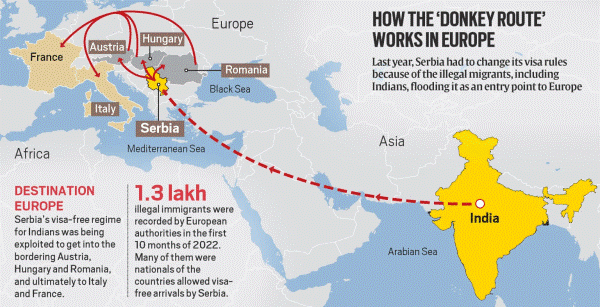
- 09 Feb 2025
In News:
Recently, a US military aircraft carrying 104 deported Indian nationals landed at Amritsar Airport. These deportees had entered the United States through the illegal “Dunki” route, paying between ?30 lakh and ?1 crore to agents and human traffickers.
Since 2009, over 15,000 Indians have been deported from the US for illegal entry, with India now figuring among the top non-Latin American countries in deportation rankings.
What is the ‘Dunki Route’?
- The “Dunki” or “Donkey” route refers to an unauthorised, arduous journey that migrants undertake through multiple countries to reach destinations like the United States, bypassing legal immigration processes.
- Routes often begin in countries with visa-on-arrival access or easy tourist visa policies for Indians:
- Latin America: Ecuador, Bolivia, Guyana, Brazil, Venezuela
- Europe/Central Asia: Azerbaijan, Turkey, Kazakhstan
- Southeast Asia: Malaysia (via Bangkok)
- Migrants often transit through Mexico, Guatemala, or Costa Rica before crossing into the US through illegal land borders.
How the Network Operates:
- Human trafficking syndicates use fake or manipulated visas (e.g., Schengen visas) to move migrants across Europe, Central Asia, and Latin America.
- Indian passport holders are sent to countries with lenient visa regimes, followed by overland or sea routes to US borders.
- Delhi Police (IGI unit) revealed that many migrants travel to Turkey or Kazakhstan and then cross to Russia or Latin America before attempting US entry.
Reasons Behind Illegal Migration:
- Economic Opportunities: Low wages in India drive migration to higher-paying economies.
- Limited Legal Avenues: Long, uncertain visa approval processes discourage legal pathways.
- Cultural Pressures: In communities like the Patels of Gujarat, migration to the US is tied to social prestige, often compelling families to sell land or take loans.
- Success Stories: Stories of successful illegal migrants inspire others to follow suit.
- Thriving Smuggling Rackets: Demand for migration has led to lucrative smuggling networks.
Consequences and Risks:
- Human Cost: Migrants risk robbery, assault, rape, and death, with bodies often unrecovered.
- Economic Loss: Families face financial ruin due to heavy agent fees.
- Legal Repercussions: Deportation, detention, and blacklisting from future visas.
- Geopolitical Sensitivity: Damages bilateral ties with countries like the US and strains consular systems.
Government Response and Policy Measures:
Proposed Legislation:
- India is considering the Overseas Mobility (Facilitation and Welfare) Bill, 2024 to:
- Promote safe, orderly, and regular migration
- Replace the outdated Emigration Act, 1983
- Establish comprehensive mechanisms for migrant protection and regulation
Awareness Campaigns:
- Indian embassies and consulates regularly issue:
- Advisories on fraudulent agents
- Guidance on safe migration
- Lists of registered recruiting agencies
Migration Trends and Global Standing:
- World Migration Report 2024 (IOM):
- India received $111 billion in remittances in 2022 – highest globally
- India is the largest country of origin for international migrants, with large diasporas in the UAE, US, and Saudi Arabia
H-1B Visa: The Legal Face of Indian Migration to the US
- H-1B Program: Allows US employers to hire foreign workers in high-skill occupations requiring at least a bachelor’s degree.
- Duration: Maximum of six years, renewable under certain conditions, or convertible into a Green Card.
- Indian Dominance:
- Indians have accounted for over 70% of all H-1B visa approvals since 2015
- Chinese applicants make up the second-largest group (~12–13%)
Political Challenges:
- Immigration, including H-1B, is a polarising issue in US politics.
- Rising anti-immigration sentiment, especially under administrations like Trump 2.0, affects policy and visa quotas.
Hotspot States and Migration Routes in India:
- Major source states of illegal migrants: Gujarat, Punjab, Haryana
- These regions are hubs for agents who facilitate illegal migration using Dunki routes and exploit aspirational youth.
National Youth Parliament Scheme (NYPS) 2.0
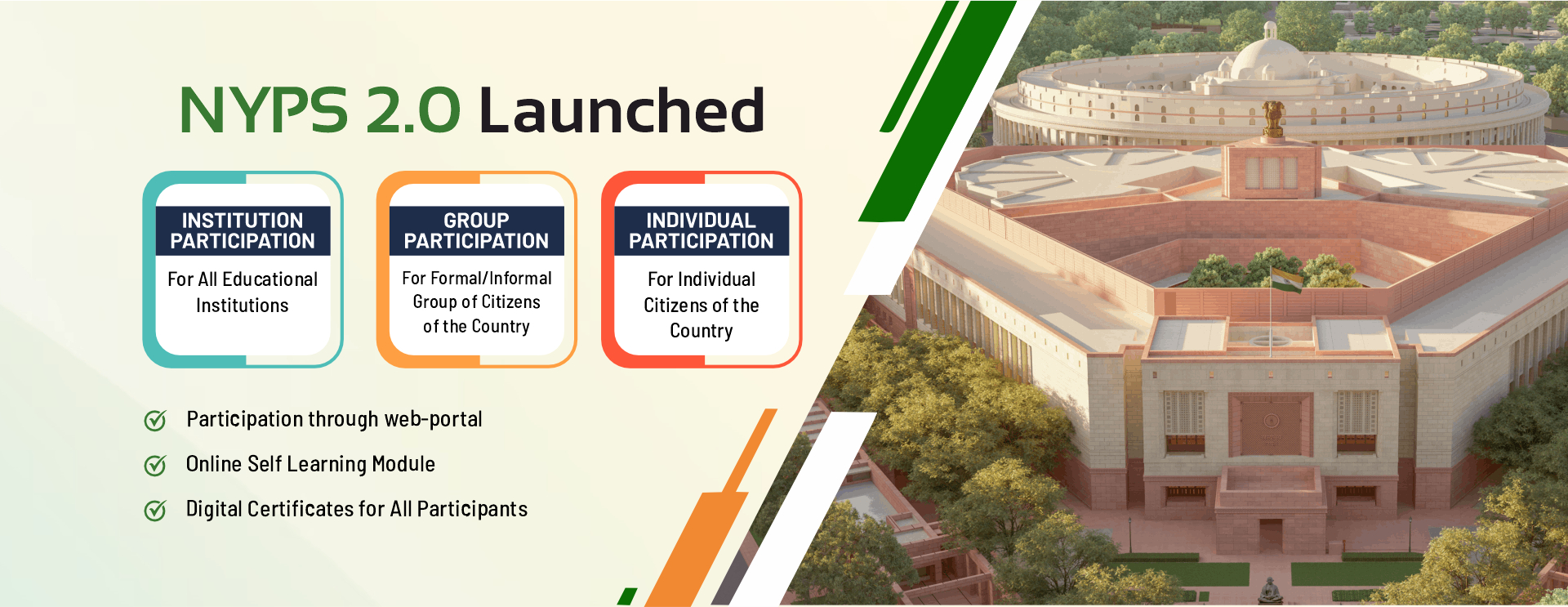
- 07 Feb 2025
In News:
The Ministry of Parliamentary Affairs has recently provided updates in the Rajya Sabha on the National Youth Parliament Scheme (NYPS) 2.0, emphasizing its role in fostering democratic values, constitutional awareness, and active citizenship among Indian youth.
About NYPS 2.0
Launched by the Ministry of Parliamentary Affairs, NYPS 2.0 aims to strengthen the roots of democracy and enhance understanding of parliamentary practices and government functioning among citizens, especially students.
Objectives
- Instill discipline, tolerance for diverse views, and democratic ethos among youth.
- Educate students about the procedures of Parliament, constitutional values, and functioning of the government.
- Encourage a democratic way of life through civic engagement.
Participation Modes via NYPS 2.0 Web Portal
The dedicated web-portal enables inclusive citizen participation in three formats:
- Institutional Participation:
- Open to all educational institutions.
- Institutions can organize Youth Parliament sittings as per portal guidelines.
- Two sub-categories:
- Kishore Sabha: For students of Class VI to XII.
- Tarun Sabha: For undergraduate and postgraduate students.
- Group Participation: Open to any group of citizens willing to conduct Youth Parliament sittings under defined norms.
- Individual Participation: Citizens can individually engage by taking a quiz on the theme ‘Bhartiya Democracy in Action’.
Training and Educational Resources
To support participants, the portal offers comprehensive e-training material, including:
- Literature on Youth Parliament
- Model Debates, Questions, and List of Business
- Model Scripts
- Video tutorials and other interactive resources
National Policy for Rare Diseases (NPRD) 2021
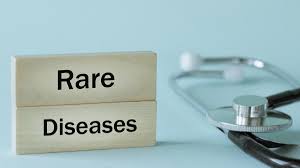
- 07 Feb 2025
In News:
Patient advocacy groups across India have raised serious concerns over delays in implementing the National Policy for Rare Diseases (NPRD) 2021, which has left many rare disease patients — especially children — in life-threatening situations. They have urged the government for immediate intervention to resume life-saving treatments and release stalled funds under the policy.
Rare Diseases:
- Rare diseases are severe, often genetic, life-threatening disorders that impact a small percentage of the population.
- They disproportionately affect children, with 30% of diagnosed patients not surviving beyond age five without timely treatment.
- Examples include Lysosomal Storage Disorders (LSDs) such as Gaucher, Pompe, Fabry, and MPS I & II.
About NPRD 2021
The Ministry of Health & Family Welfare launched the National Policy for Rare Diseases in March 2021 to streamline the diagnosis, research, and treatment of rare diseases in India.
Key Features of NPRD 2021:
- 63 rare diseases currently included under the policy (as recommended by the Central Technical Committee for Rare Diseases (CTCRD)).
- Categorization of diseases into three groups:
- Group 1: Diseases amenable to one-time curative treatment.
- Group 2: Diseases requiring long-term/lifelong treatment with relatively lower cost.
- Group 3: Diseases requiring very high-cost lifelong therapy where patient selection is critical.
Institutional Support:
- 12 Centres of Excellence (CoEs) identified at premier government hospitals to provide diagnosis and treatment.
- Nidan Kendras established to provide genetic testing and counselling services.
- National Consortium for Research and Development on Therapeutics for Rare Diseases (NCRDTRD) set up to coordinate R&D and promote indigenous drug manufacturing.
- Tax exemptions (on GST and Customs Duty) granted for imported drugs for individual and institutional use.
Financial Provisions:
- Financial assistance of up to ?50 lakh per patient for treatment at CoEs.
- Patients must register at CoEs to receive diagnosis and initiate treatment.
Challenges and Crisis
Despite policy provisions, implementation has been stalled, leading to a healthcare emergency for rare disease patients.
Key Issues Raised:
- Insufficient funding: The ?50 lakh cap is inadequate for chronic and ultra-rare diseases that need lifelong therapy.
- Administrative delays: Fund disbursement to CoEs has been slow, disrupting continuity of treatment.
- Impact on Patients:
- Patients like Alishba Khan, Ashok Kumar, Imran Ghoshi, and Adrija Mudy with Gaucher or MPS I have exhausted their funding.
- Patients who had previously stabilized are now regressing due to interrupted therapy at leading hospitals like AIIMS Delhi, IGICH Bangalore, and IPGMER Kolkata.
Legal Developments:
- On October 4, 2024, the Delhi High Court directed the Ministry of Health and Family Welfare to:
- Release additional funds beyond the ?50 lakh limit.
- Create a ?974 crore National Fund for FY 2024–25 and 2025–26.
- Months later, no concrete action has been taken, further eroding trust in the policy's effectiveness.
Demands by Advocacy Groups
- Sustainable, long-term funding model for lifelong treatment of rare and ultra-rare diseases.
- Immediate fund release to CoEs and simplification of administrative processes.
- Ensure uninterrupted access to essential therapies and expand the scope of financial support.
Iran’s Missile Advancements
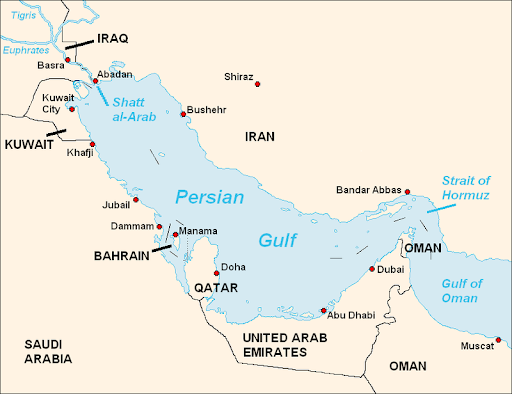
- 04 Feb 2025
In News:
In a significant military development, Iran has successfully test-fired the Ghadr-380, an advanced anti-warship cruise missile with a range of 1,000 kilometers (600 miles).
This capability allows it to target U.S. Navy warships deployed in critical maritime regions like the Persian Gulf and the Sea of Oman. The missile test was launched from an underground missile facility and was broadcast on Iranian state television, underscoring its strategic messaging.
Key Missiles Unveiled by Iran:
1. Ghadr-380 Cruise Missile:
- Type: Anti-warship cruise missile
- Range: Over 1,000 km
- Features:
- Anti-jamming capability
- Quick-launch readiness (operable by one person in less than 5 minutes)
- Launch Details:
- Fired from an underground missile base in central Iran
- Targeted the Sea of Oman
- Specific test timing and warhead specifications were not disclosed
2. Etemad Ballistic Missile:
- Name Meaning: Etemad means "trust" in Persian
- Type: Precision-guided ballistic missile
- Range: 1,700 km (1,056 miles)
- Specifications:
- Length: 16 meters
- Diameter: 1.25 meters
- Equipped with precision-guided warhead
- Built by: Iranian Ministry of Defence
Ballistic vs. Cruise Missiles: Understanding the Distinction
Feature Ballistic Missile Cruise Missile
Propulsion Rocket-propelled at launch; unpowered descent Jet engine-powered throughout flight
Flight Path Arched trajectory (leaves and re-enters atmosphere) Straight, low-altitude flight within atmosphere
Detection Easier to track via radar once launched Difficult to detect due to low-altitude flight
Launch Platforms Ground-based, silo, mobile launchers Ground, air, or sea platforms
Warhead Capability Can carry conventional or nuclear warheads Usually conventional, but may carry nuclear in advanced forms
Iran’s Strategic Missile Doctrine
Underground Missile Facilities:
- Iran maintains extensive underground missile bases, especially in southern Iran near the Strait of Hormuz—a chokepoint for global oil trade.
- Such facilities enhance survivability and rapid response capabilities.
Missile Development Drivers:
- Iran's missile program evolved as a strategic deterrent post the Iran-Iraq War (1980–1988), where both countries used missiles to target civilian areas.
- UN arms embargoes led Iran to focus on domestic development of missile systems, including both cruise and ballistic types.
Capabilities:
- Iran now claims to possess missiles with ranges up to 2,000 kilometers, capable of reaching parts of the Middle East, including Israel.
- The Ghadr-380 and Etemad missiles are examples of technological diversification—from ballistic to precision cruise systems.
Implications for Regional and Global Security
- Deterrence Posture: Iran’s missile advancements strengthen its deterrence, especially amid strained relations with the U.S. and its allies.
- Threat to Maritime Security: The Ghadr-380, with its anti-warship focus, poses a direct threat to U.S. naval assets in the Persian Gulf and adjacent waters.
- Escalation Risks: Enhanced missile capabilities could escalate regional tensions, particularly in flashpoints like the Strait of Hormuz.
- Western Concerns: The U.S. and European nations remain wary of Iran’s dual-track approach involving missile and nuclear program developments.
National Geospatial Mission
- 03 Feb 2025
In News:
Finance Minister Nirmala Sitharaman announced the launch of a National Geospatial Mission in the Budget 2025-26.
Key Highlights:
Objective: To modernize land records, enhance urban planning, and create a robust geospatial infrastructure to support India’s broader development goals, including sustainable growth, efficient governance, and improved public service delivery.
Key Features of the Mission:
- Modernization of Land Records:
- Digitization and updation of land records using geospatial technology.
- Aim to reduce land disputes and promote efficient and transparent land use.
- Urban and Infrastructure Planning:
- Provides high-resolution geospatial data for informed urban planning.
- Supports better design and execution of infrastructure through integration with the PM Gati Shakti framework.
- Development of National Geospatial Data Infrastructure (NGDI):
- Integrates geospatial data from multiple departments and ministries.
- Enables seamless access and interoperability for users across sectors.
- Open Geospatial Data Policy:
- Encourages private sector participation by allowing access to non-sensitive, high-resolution data.
- Reduces reliance on foreign geospatial data providers.
- Sectoral Impact:
- Agriculture: Precision farming, resource mapping, and yield optimization.
- Disaster Management: Enhances early warning systems and response planning.
- Environmental Monitoring: Facilitates conservation, deforestation tracking, and ecosystem health analysis.
- Transportation: Improves logistics, routing, and infrastructure placement.
- Climate Monitoring: Aids in data-driven climate action and adaptation planning.
- Technological Integration:
- Utilizes emerging technologies such as AI, drones, and quantum computing for spatial data collection and analysis.
- Promotes research and development in geospatial science to drive innovation.
- Support to Private Sector:
- Anticipated growth in demand for services from geospatial startups, drone companies, and mapping enterprises.
- Strengthens India’s indigenous geospatial capability aligned with the booming global geospatial market (projected to reach $1,064 million by 2030).
Significance and Alignment with National Goals:
- Enhances transparency and efficiency in land governance.
- Contributes to sustainable urban development.
- Aligns with Digital India and Atmanirbhar Bharat by reducing data dependency on foreign sources.
- Acts as a foundational enabler for India’s development agenda, particularly in areas of resource management, climate resilience, and national security.
National Bank for Financing Infrastructure and Development (NaBFID)
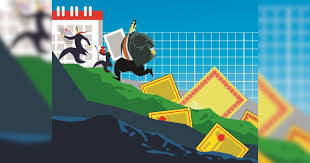
- 03 Feb 2025
In News:
In the Union Budget 2025, Finance Minister Nirmala Sitharaman announced that the National Bank for Financing Infrastructure and Development (NaBFID) will set up a partial credit enhancement facility to promote corporate bond issuance in the infrastructure sector.
Need for Credit Enhancement:
- Pension and insurance funds in India, as per regulatory norms, can invest only in AA-rated or higher securities.
- Most infrastructure firms issue bonds rated below this threshold (often "A" rated).
- Partial credit enhancement will elevate such bonds to AA ratings, enabling large-scale participation from long-term institutional investors.
Significance:
- Currently, pension and insurance funds prefer government bonds. However, with the government's ongoing fiscal consolidation, sovereign bond issuance is expected to decline.
- This measure provides alternative, long-term investment avenues for these funds.
- Enhances liquidity in the corporate bond market, especially for infrastructure players.
- Helps in reducing infrastructure companies' dependence on banks for funding.
About NaBFID:
- Established: 2021 under The National Bank for Financing Infrastructure and Development Act, 2021.
- Type: Development Finance Institution (DFI).
- Regulator: Reserve Bank of India (RBI) as an All-India Financial Institution (AIFI).
- Purpose: Bridge gaps in long-term, non-recourse infrastructure financing and promote bond and derivatives markets in India.
Development Finance Institutions (DFIs):
- Government-owned or public sector-backed institutions that finance large-scale, long-gestation projects.
- Provide medium (1–5 years) and long-term (>5 years) financing.
- Raise funds via sovereign borrowings, insurance companies, pension funds, and sovereign wealth funds.
- Offer both financial support (loans, guarantees) and technical support (project viability, consultancy).
- Do not accept public deposits.
Benefits of Partial Credit Enhancement:
- Democratizes access to the corporate bond market for sub-AA-rated firms.
- Attracts long-term capital into infrastructure through safer, credit-enhanced instruments.
- Promotes diversification and deepening of India's debt markets.
- Makes infrastructure financing more cost-efficient and sustainable over the long term.
Challenges Ahead:
- Regulatory streamlining is essential.
- Guarantee fees need optimization to ensure cost competitiveness against traditional bank lending.
National Manufacturing Mission

- 02 Feb 2025
In News:
- The National Manufacturing Mission (NMM) has been launched to accelerate India’s transition into a global manufacturing hub.
- This mission is a key component of the Make in India initiative and aims to raise the manufacturing sector’s contribution to GDP from 17% to 25% by 2025.
Scope & Coverage
- Targets small, medium, and large industries across sectors.
- Provides a comprehensive support framework involving policy guidance, execution roadmaps, and governance structures for central ministries and state governments.
Five Core Focus Areas:
- Ease and cost of doing business
- Skilling for future-ready jobs
- Support for a dynamic MSME sector
- Technology availability and innovation
- Enhancement of product quality
Clean Tech Manufacturing Focus
In line with India's sustainable development goals, the mission will promote domestic value addition and build robust manufacturing ecosystems for:
- Solar PV cells
- Electric vehicle (EV) batteries
- Motors and controllers
- Electrolyzers
- Wind turbines
- Very high-voltage transmission equipment
- Grid-scale batteries
Strategic Objective: Reduce reliance on Chinese imports and integrate India into global clean tech supply chains.
MSME Sector Support
- Credit Guarantee Cover for MSMEs increased from ?5 crore to ?10 crore.
- Revised Classification Criteria: Investment and turnover limits enhanced by 2.5x and 2x, respectively.
- Aims to empower MSMEs with greater access to credit and growth incentives.
Sector-Specific Measures
1. Footwear & Leather Sector
- A new Focus Product Scheme will support:
- Design capacity
- Component manufacturing
- Machinery for non-leather and leather footwear
- Expected Impact:
- Employment for 22 lakh persons
- Turnover of ?4 lakh crore
- Exports over ?1.1 lakh crore
2. Toy Manufacturing – National Action Plan for Toys
- Objective: Make India a global hub for innovative and sustainable toys.
- Strategy:
- Develop manufacturing clusters
- Promote skilling and innovation
- Strengthen the ‘Made in India’ brand in the global toy market
3. Food Processing – ‘Purvodaya’ Focus
- Establishment of a National Institute of Food Technology, Entrepreneurship and Management in Bihar.
- Purpose:
- Boost food processing in Eastern India
- Enhance value addition for farmers
- Create employment and entrepreneurial opportunities
Bharatiya Bhasha Pustak Scheme
- 02 Feb 2025
In News:
Announced in the Union Budget 2025–26, the Bharatiya Bhasha Pustak Scheme is a major initiative to provide digital textbooks and learning materials in multiple Indian languages for school and university students.
Key Features:
- Digital Access: Study resources will be made available in digital formats via platforms such as DIKSHA, e-PG Pathshala, and the National Digital Library of India.
- Target Groups: Students in schools, colleges, and universities affiliated with UGC, AICTE, and other regulatory bodies.
- Focus Areas: STEM, social sciences, humanities, and commerce; with a special emphasis on technical education in Indian languages.
- Use of Technology: AI-based tools will support automated translation, voice-assisted learning, and customized content.
- Alignment with NEP 2020: Promotes multilingualism and regional language education, as envisioned in the National Education Policy.
Complementary Initiative – ASMITA (Augmenting Study Materials in Indian Languages)
- Aims to develop 22,000 textbooks in Indian languages over the next five years.
- Jointly led by UGC and the Bharatiya Bhasha Samiti under the Ministry of Education.
- Thirteen nodal universities will coordinate content development, supported by regional institutions.
- SOPs (Standard Operating Procedures) have been developed for translation, writing, editing, review, plagiarism checks, and publication.
Budgetary Allocations and Educational Infrastructure
Highest-Ever Allocation for School Education: ?78,572 crore
- 16.28% rise over revised estimates of 2024–25.
- ?9,503 crore allocated to Kendriya Vidyalaya Sangathan (?776 crore hike).
- Plan to set up 50,000 Atal Tinkering Labs in government schools to foster innovation and scientific thinking.
- BharatNet Project to ensure broadband access in all government secondary schools within three years.
Higher Education Allocation: ?50,077.95 crore
- Covers central universities, IITs, and centrally sponsored schemes.
- Budget for centrally sponsored schemes like PM-USHA and RUSA increased to ?1,815 crore.
- Student financial aid raised to ?2,160 crore.
Boost to IIT Infrastructure:
- Additional infrastructure for five IITs established after 2014, accommodating 6,500 more students.
- Expansion of hostel and academic facilities at IIT Patna.
Artificial Intelligence in Education
- Announcement of a Centre of Excellence in AI for Education with an outlay of ?500 crore.
- Objective: Reduce disparities, improve efficiency, and ensure equitable access to high-quality education using AI technologies.
Ocean Coordination Mechanism (OCM)
- 02 Feb 2025
In News:
Recently, the Intergovernmental Oceanographic Commission of UNESCO (UNESCO-IOC) announced the signature of a Memorandum of Understanding (MoU) enabling the creation of the Ocean Coordination Mechanism (OCM).
What is the Ocean Coordination Mechanism (OCM)?
- It is a collaborative governance initiative aimed at the sustainable management of marine resources in the Caribbean and North Brazil Shelf region.
- Conceived under the 10-year CLME+ Strategic Action Programme (SAP)—endorsed in 2014—it represents a transformative step toward integrated ocean governance.
Key Objectives of OCM:
- Promote sustainable fisheries
- Advance ecosystem restoration and marine spatial planning
- Establish marine protected areas (MPAs)
- Encourage pollution control and blue carbon development
- Foster cross-country and cross-institutional cooperation
It builds on lessons from earlier efforts like the Pacific Islands Regional Ocean Policy (PIROP), aiming to avoid past pitfalls such as vague targets, lack of integration, and funding shortfalls.
Significance of the Caribbean and North Brazil Shelf Region:
- Coral reefs and fisheries contribute ~$610 million annually to local economies
- The North Brazil Shelf is home to over 500 fish species
- Acts as a natural barrier against storms, crucial for climate resilience
Blue Carbon and Climate Action:
The OCM promotes blue carbon projects that utilize coastal ecosystems (like mangroves and seagrasses) for carbon storage, enhancing climate resilience and providing livelihoods to local communities.
Funding Details:
- $15 million from Global Environment Facility (GEF) via the UNDP/GEF PROCARIBE+ Project (2024–2028)
- Additional $126.02 million in co-financing mobilized
- However, the funding is modest compared to initiatives like the Global Fund for Coral Reefs (targeting $3 billion by 2030), raising concerns about OCM's long-term financial sustainability.
Role of IOC-UNESCO:
Established in 1961, the IOC of UNESCO promotes international cooperation in ocean science and policy. Key functions include:
- Marine scientific research (climate, biodiversity, sustainability)
- Tsunami warning systems
- Oceanographic data collection and dissemination
- Leading the UN Ocean Decade (2021–2030) for global marine conservation
Why OCM Matters:
- Addresses the Ocean–Climate–Biodiversity nexus
- Aims to ensure equitable access to marine resources
- Prioritizes local and vulnerable communities
- Integrates traditional knowledge with scientific research for culturally inclusive conservation
Kurdistan Region
- 01 Feb 2025
In News:
India recently dispatched a humanitarian shipment of medical supplies to the Kurdistan Region in Iraq, reflecting its commitment to global cooperation and humanitarian diplomacy.
About the Kurdistan Region
- Geographical Spread: The Kurdistan Region is a culturally and geographically distinct area predominantly inhabited by ethnic Kurds, spread across:
- Northern Iraq (Erbil, Sulaymaniyah, Dohuk, Halabja)
- Eastern Turkey
- Western Iran
- Northern Syria and parts of Armenia
- Capital: Erbil (Iraq)
- Terrain: Dominated by the Zagros and Taurus mountain systems
- Major Rivers: Tigris River and Greater Zab River, crucial for agriculture and settlement
Ethnic and Political Context
- Kurds: An ethnic group of 25–30 million people, mostly Sunni Muslims, with no official nation-state. They seek autonomy or independence through the Kurdish nationalist movement.
- Kurdistan Regional Government (KRG): An autonomous administration in northern Iraq, managing the Kurd-majority areas with limited sovereignty under Iraq’s federal system.
- Geopolitical Significance:
- Rich in oil and natural gas, especially in Iraqi Kurdistan
- Strategically located, controlling key border regions and trade routes
- Kurdish militia (Peshmerga) played a critical role in the fight against ISIS
Ongoing Political Disputes
- Kurdish Independence Movement:
- The 2017 independence referendum in Iraqi Kurdistan was rejected by Baghdad, followed by economic and military backlash.
- Kurds face resistance from Iraq, Turkey, Iran, and Syria, which fear territorial fragmentation.
- Turkey regularly conducts military operations against Kurdish groups, labeling them as threats to national security.
India-Kurdistan Relations
- Diplomatic Presence: India established a Consulate in Erbil in August 2016 to deepen ties with the Kurdistan Region and Iraq.
- Economic and Workforce Engagement:
- Indian companies have participated in trade fairs in Erbil and Sulaymaniyah.
- A growing number of Indian workers are employed in sectors like:
- Steel mills
- Oil companies
- Construction projects
- Indian workers are valued for their skills and reliability in these industries.
Financialisation
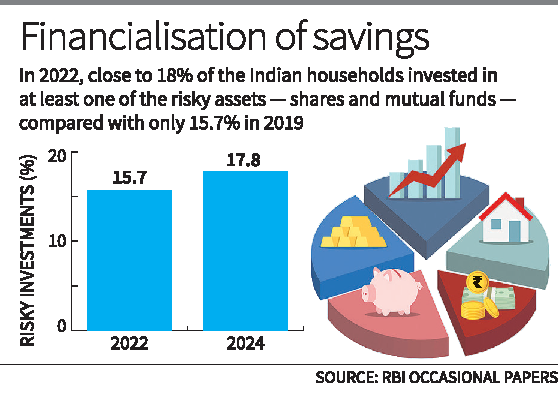
- 01 Feb 2025
In News:
The Economic Survey 2024–25 cautions against the risks of excessive financialisation in India, emphasizing that while finance is a crucial enabler of economic growth, unchecked expansion of the financial sector can pose systemic risks, increase inequality, and divert resources from the real economy.
What is Financialisation?
Financialisation refers to the growing dominance of financial markets, institutions, and motives in shaping economic policies, business decisions, and resource allocation. It involves:
- A shift from productive (real sector) activities like manufacturing to financial activities, including trading, speculation, and asset management.
- Increasing reliance on asset price growth (e.g., stocks, real estate) to stimulate the economy.
- Deep influence of financial motives in corporate governance, economic policies, and household behavior.
Key Drivers of Financialisation in India
- Increased household savings funneled into stock markets.
- Growing retail investor participation in equities and mutual funds.
- Policy and regulation increasingly influenced by financial market considerations.
- Rising public and private sector debt to leverage economic growth.
Risks Highlighted by the Economic Survey
- Real Sector Crowding Out: Over-expansion of the financial sector may compete with the real economy for scarce resources like skilled labour and capital, potentially depriving productive sectors.
- Unsustainable Booms: Rapid financial growth often favours high-collateral, low-productivity investments (e.g., construction) over innovation and manufacturing, creating unsustainable financial booms.
- Complex Financial Products: Proliferation of opaque and complex financial instruments can increase consumer risk exposure and the probability of a financial crisis, as seen during the 2008 global financial meltdown.
- Increased Inequality: Financialisation tends to transfer income from the real sector to the financial sector, worsening income inequality and contributing to wage stagnation.
- Debt Dependency: Over-reliance on financial leverage (debt) increases macro-financial vulnerabilities, especially if credit growth outpaces productive investment.
Global Lessons and Historical Context
- 2008 Global Financial Crisis: Reckless lending and financial engineering, including mortgage-backed securities, led to a global economic collapse. India was impacted indirectly, prompting RBI intervention to stabilise the economy.
- Examples from Ireland & Thailand: Rapid growth of private credit in these countries led to reduced productivity and economic distortions, serving as cautionary tales.
Balanced View on Finance
The Survey recognizes that a well-regulated financial system plays a vital role in:
- Channeling capital to innovative and high-risk ventures.
- Reducing transaction costs and improving price discovery.
- Alleviating poverty and inequality by enabling shock absorption for households and firms.
- Smoothing consumption across economic cycles.
However, the Survey emphasizes that there is a tipping point beyond which financial development becomes counterproductive.
National Critical Mineral Mission
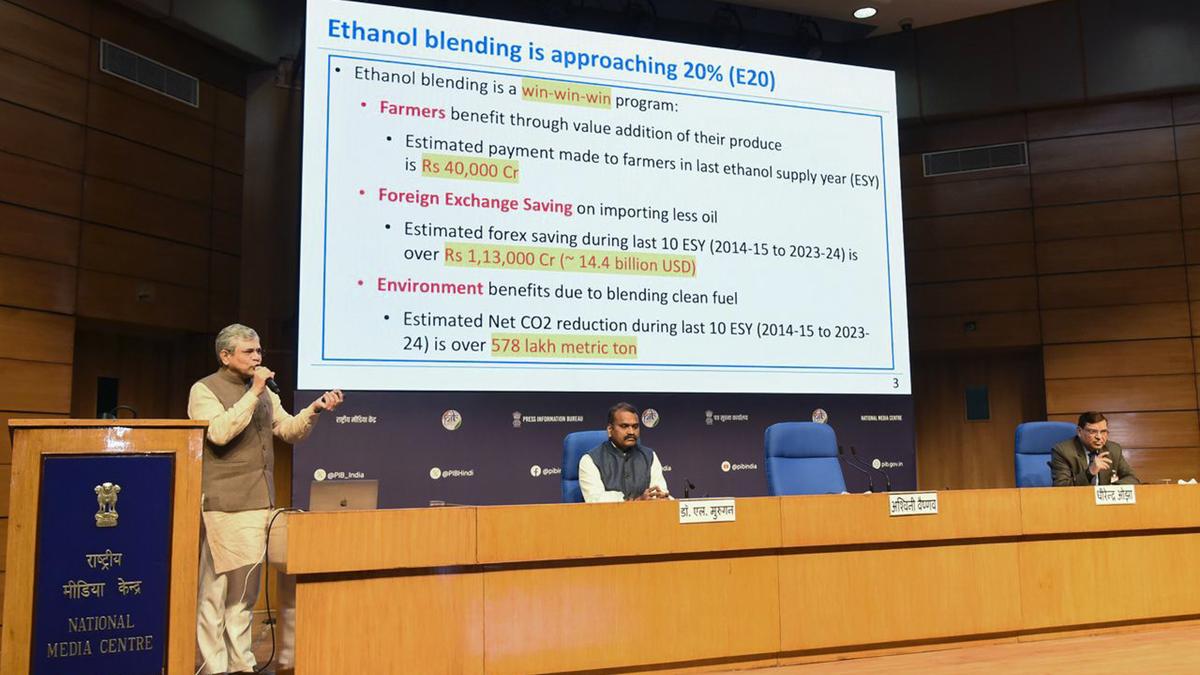
- 31 Jan 2025
In News:
The Union Cabinet has launched the National Critical Mineral Mission (NCMM) with a total outlay of ?34,300 crore over seven years, including ?16,300 crore government expenditure and ?18,000 crore investment from PSUs and private players.
Key Highlights:
Objectives of NCMM
- Reduce import dependence on critical minerals vital for clean energy, electronics, defence, and high-tech industries.
- Promote domestic exploration, mining, processing, and recycling of critical minerals.
- Facilitate overseas acquisition of mineral assets.
- Strengthen India’s mineral security and ensure self-reliance (Atmanirbhar Bharat).
Key Features
- Value Chain Coverage: Exploration → Mining → Beneficiation → Processing → Recycling of end-of-life products.
- Fast-track regulatory approvals for mining projects.
- Creation of mineral processing parks and promotion of sustainable extraction technologies.
- Establishing a strategic stockpile of critical minerals.
- Development of a Centre of Excellence on Critical Minerals to support R&D.
- Expansion of PRISM initiative to fund startups and MSMEs in the sector.
- Whole-of-government approach: Collaboration among ministries, PSUs, private sector, and research institutions.
Why Critical Minerals Matter
Critical minerals are essential inputs for:
- Green energy: EV batteries, solar panels, wind turbines.
- Electronics: Semiconductors, fiber optics.
- Defence: Aircraft, missile guidance systems.
- Medical technologies: MRI machines, pacemakers.
India’s clean energy transition and manufacturing competitiveness hinge on a steady and secure supply of these minerals.
India’s Import Dependence
India is dependent on imports, especially from China, for several critical minerals like lithium, cobalt, titanium, graphite, and tellurium. This exposes India to supply chain vulnerabilities amid shifting global geopolitics.
List of 30 Critical Minerals for India
Includes: Lithium, Cobalt, Nickel, Graphite, Rare Earth Elements (REEs), Beryllium, Titanium, Tungsten, Gallium, Indium, Selenium, Cadmium, etc.
Strategic and Legislative Initiatives
- Amendment to MMDR Act (1957) in 2023: Enabled auction of 24 critical mineral blocks.
- OAMDR Act (2002) amendment: Introduced transparent offshore mineral exploration.
- Duty waivers in Union Budget 2024–25: Customs duties removed on key critical minerals to promote domestic processing.
- Exploration by GSI: 368 projects in last 3 years; 227 more planned for FY 2025–26.
- KABIL: Acquired 15,703 ha in Argentina for lithium mining.
Global Context
- Global powers (US, EU, Japan) are pursuing strategies for critical mineral security.
- China dominates refining of lithium, cobalt, and REEs.
- India is part of the Minerals Security Partnership (MSP) to diversify global mineral supply chains.
Significance for India
- Ensures long-term resource security for clean technologies.
- Supports EV and renewable energy manufacturing goals.
- Enhances strategic autonomy in defence and electronics.
- Makes India an attractive hub for foreign investment in green technologies.
Challenges and the Way Forward
- Geopolitical risks in overseas asset acquisition.
- Environmental impacts of large-scale mining.
- Need for strong R&D ecosystem, financial incentives, and public-private partnerships.
- Sustainable mining practices and global collaboration are essential for long-term success.
Environment Protection (End-of-Life Vehicles) Rules, 2025
- 31 Jan 2025
In News:
MoEFCC Notifies Rules for End-of-Life Vehicles to Minimize Waste and Pollution.
Key Highlights:
Notified by: Ministry of Environment, Forest and Climate Change (MoEF&CC)
Effective from: April 1, 2025
Legal Basis: Environment Protection Act, 1986
Objective: To promote environmentally sound management of end-of-life vehicles (ELVs), enable recycling and reuse of vehicle components, and reduce resource extraction, pollution, and waste generation.
Key Features of the ELV Rules, 2025
1. Scope and Coverage
- Applicable to all vehicle categories including electric vehicles (EVs), e-rickshaws, and e-carts.
- Exempted vehicles: Agricultural tractors, trailers, combine harvesters, and power tillers.
- Exempted waste types: Batteries, plastics, tyres, used oil, and e-waste (governed under separate waste management rules).
2. Extended Producer Responsibility (EPR)
- Vehicle producers are mandated to meet annual scrapping targets based on the age of vehicles:
- Transport vehicles: 15 years
- Non-transport vehicles: 20 years
- Producers must fulfill their EPR obligations for all vehicles introduced into the domestic market, including those used internally.
- Annual EPR declarations must be submitted to the Central Pollution Control Board (CPCB) by April 30 each year.
- Producers must promote ELV deposition at designated collection centres or Registered Vehicle Scrapping Facilities (RVSFs).
3. Responsibilities of Stakeholders
- Registered Owners & Bulk Consumers: Required to deposit ELVs at designated centres or RVSFs within 180 days of becoming unfit.
- Collection Centres:
- Handle ELVs in an environmentally responsible manner.
- Maintain records and ensure safe storage and transfer to RVSFs.
- Registered Vehicle Scrapping Facilities (RVSFs):
- Undertake depollution, dismantling, segregation, and recycling.
- Ensure environmentally sound disposal of non-recyclables via authorized TSDFs.
- Issue EPR certificates based on the volume of steel processed; valid for 5 years.
4. Monitoring, Compliance, and Penalties
- CPCB and State Pollution Control Boards (SPCBs) are responsible for:
- Registration, inspection, and audit of producers, RVSFs, and bulk consumers.
- Taking action against non-compliance, including suspension or cancellation of registration.
- Levying environmental compensation for violations that cause harm to public health or the environment.
5. Registration & Certification
- Producers register with CPCB; RVSFs and bulk consumers with respective SPCBs.
- Registration certificates are issued within 15 days of application via a centralized online portal.
- EPR certificates are non-transferable and allow adjustment of both current and backlog obligations.
Related Policy and Incentives by MoRTH
The Ministry of Road Transport and Highways (MoRTH) supports the ELV Rules through:
- Vehicle Scrapping Policy: Targets voluntary phasing out of unfit and polluting vehicles.
- Motor Vehicles (Registration and Functions of Vehicle Scrapping Facility) Rules, 2021: Provides operational criteria for RVSFs.
- Central Motor Vehicles (Amendment) Rules, 2021:
- Waiver of registration fee for buyers submitting ELV Certificates of Deposit.
- Concession in motor vehicle tax: 25% for non-transport, 15% for transport vehicles.
Electric Mobility Push
- MoRTH has issued several notifications promoting EVs, including:
- Permit exemptions for battery-operated and ethanol/methanol-fueled vehicles.
- Fee exemptions for registration and renewals.
- Tourist permit benefits for EVs and distinct registration marks for visibility.
PM E-DRIVE Scheme
- Launched by Ministry of Heavy Industries on 29th September 2024 with a ?10,900 crore outlay.
- Aims to support electric 2-wheelers, 3-wheelers, ambulances, trucks, and buses with ?3,679 crore in demand incentives.
- Targets subsidization of over 28 lakh EVs.
Resumption of Kailash Mansarovar Yatra
- 29 Jan 2025
In News:
After a four-year hiatus due to the COVID-19 pandemic and the 2020 Galwan Valley clash, India and China have agreed to resume the Kailash Mansarovar Yatra in June 2025, along with other confidence-building measures.
This decision aligns with the 75th anniversary of India-China diplomatic relations, symbolizing an attempt to stabilize and recalibrate bilateral ties through people-centric initiatives.
Key Highlights:
Key announcements include:
- Resumption of the Kailash Mansarovar Yatra
- Restoration of direct air services
- Visa issuance for journalists and think tanks
- Hydrological data sharing and cooperation on trans-border rivers
- Enhanced people-to-people exchanges and academic/media dialogues
About the Yatra
- The Yatra involves a pilgrimage to Mount Kailash and Lake Mansarovar in the Tibetan Autonomous Region (Xizang).
- Organised by India’s Ministry of External Affairs between June–September, via two routes:
- Lipulekh Pass (Uttarakhand)
- Nathu La Pass (Sikkim)
- Supported by the state governments of Uttarakhand, Sikkim, and Delhi, and coordinated with the Indo-Tibetan Border Police.
- Open only to Indian citizens with valid passports; no financial subsidy is provided by the Government of India.
Geographical and Religious Significance:
- Mount Kailash, located in the Kailash Range (Transhimalaya), is the source of four major rivers: Sutlej, Brahmaputra, Indus, and Karnali.
- Revered across religions:
- Hindus consider it the abode of Lord Shiva; Mansarovar is one of the 51 Shaktipeeths.
- Buddhists and Tibetans regard it as the ‘Stairway to Heaven’.
- Jains believe Rishabhanatha attained enlightenment here—referred to as Ashtapada.
Diplomatic Interpretations and Differences
- India’s Position: Emphasized a step-by-step, cautious approach focusing on rebuilding trust and resolving contentious issues, particularly the border situation. India sought policy predictability and transparency in trade, and reaffirmed the importance of mutual respect and interests.
- China’s Position: Took a more optimistic and strategic stance, stressing the need to avoid "mutual suspicion" and to advance cooperation based on long-term national interests. It emphasized early action, including the swift resumption of the Yatra and flights.
Ongoing Concerns in Bilateral Relations
- Unresolved Border Disputes:
- Tensions persist along the Line of Actual Control (LAC)—notably in Galwan (2020) and Tawang (2022).
- India and China have made limited progress in resolving issues in Depsang and Demchok.
- Trade Imbalance:
- Bilateral trade in 2023–24 stood at USD 118.4 billion, with India facing a trade deficit of USD 85 billion.
- India raised concerns on market access and non-tariff barriers.
- China-Pakistan Axis:
- The China-Pakistan Economic Corridor (CPEC) runs through Pakistan-occupied Kashmir, violating India’s territorial sovereignty.
- China’s support for Pakistan in multilateral forums remains a thorn in bilateral ties.
- China’s Regional Assertiveness:
- Expanding influence in South Asia and the Indian Ocean through the String of Pearls, strategic presence in Maldives, Sri Lanka, and strong claims in the South China Sea, contribute to regional unease.
Significance of the Current Diplomatic Thaw
- The resumption of the Kailash Mansarovar Yatra reflects a symbolic softening in ties, emphasizing religious diplomacy and people-to-people connection.
- Restoration of direct flights and journalistic presence can aid in reducing mistrust.
- Hydrological cooperation, particularly over the Brahmaputra River, is essential for India’s water security, especially with China constructing mega-dams upstream.
Way Forward
- Rebuild Trust Through Engagement: Maintain diplomatic dialogues via platforms like BRICS, SCO, and G20, while holding to core national interests.
- Resolve Border Disputes: Pursue early finalization of the LAC through confidence-building agreements and military disengagement.
- Diversify Economic Strategy: Reduce dependency on Chinese imports by strengthening domestic manufacturing and regional trade alternatives.
- Enhance Cultural Diplomacy: Use platforms like the Kailash Yatra to foster mutual understanding rooted in shared civilizational values.
- Promote Transparency and Reciprocity: Especially in media, trade, and information sharing, to ensure balanced bilateral engagement.
Uniform Civil Code (UCC) in Uttarakhand
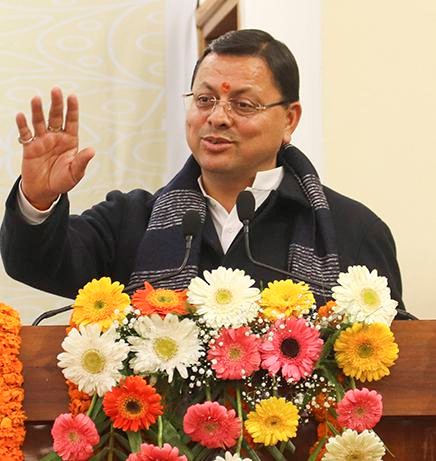
- 28 Jan 2025
In News:
On January 27, 2025, Uttarakhand became the first Indian state to formally implement the Uniform Civil Code (UCC) after Independence. The legislation was passed by the State Assembly on February 7, 2024, and received Presidential assent on March 12, 2024.
Historical Background:
- A five-member expert committee chaired by Justice (Retd.) Ranjana Prakash Desai was constituted to draft the UCC report.
- The committee submitted its report on October 18, 2023.
- Though initially scheduled for implementation by November 9, 2024 (Uttarakhand's Foundation Day), the rollout was delayed due to administrative preparedness and staff training.
Scope and Applicability:
- Applicable to all residents of Uttarakhand, including those in live-in relationships outside the state.
- Scheduled Tribes (as per Article 342) and migrated natives have been exempted to safeguard cultural rights.
Key Provisions of the UCC:
1. Marriage, Divorce & Live-in Relationships
- Legal marriage age: 21 years (men), 18 years (women).
- Mandatory registration of marriages, divorces, and live-in relationships.
- Prohibited practices: Triple talaq, halala, iddat, polygamy, and child marriage.
- Live-in Relationships:
- Mandatory registration for couples aged 21 and above.
- Parental consent required if under 21.
- Termination of live-in relationships requires mutual consent.
- Mandatory reporting of pregnancy within 30 days of childbirth.
- Landlords cannot deny housing to registered live-in couples.
2. Inheritance & Property Rights
- Equal inheritance rights for sons and daughters.
- Children born to live-in couples recognized as legitimate, eligible for inheritance.
3. Wills and Succession
- Wills can be:
- Submitted online.
- Uploaded as handwritten/typed documents.
- Recorded as a 3-minute video.
Digital Infrastructure – UCC Portal (ucc.uk.gov.in):
- Aadhaar-based verification for authenticity.
- AI-based multilingual translation in 22 Indian languages.
- Tatkal service for expedited registrations with a nominal fee.
- Integrated with 13+ departments, including police, civic bodies, and courts.
- Disaster recovery systems and cloud-based architecture ensure secure data management.
- Access to:
- Online registration of marriages, divorces, live-in relationships.
- Upload and registration of wills.
- Grievance redressal and appeal mechanisms.
Administrative Framework:
- Village Panchayat Development Officers appointed as sub-registrars in rural areas.
- Common Service Centres (CSCs) enabled to facilitate registration, especially in remote and mountainous areas.
- Registration applications processed within 15 days, or 3 days in emergencies.
- Appeals must be filed within 30 days of rejection, resolved within 60 days.
Penalties:
- Initial warnings for non-compliance.
- Fines imposed for repeated violations.
Significance:
- The UCC aims to promote gender equality, legal uniformity, and women's empowerment.
- Represents a constitutional vision under Article 44, reinforcing the idea of a common civil law for all citizens.
- Seen as a potential model for other states in India.
Himachal Pradesh: Statehood Day
- 28 Jan 2025
In News:
The Prime Minister greeted the people of Himachal Pradesh (HP) on the occasion of Statehood Day (25th January).
Key Highlights:
Statehood Day: Celebrated annually on 25th January, marking the day Himachal Pradesh attained full statehood in 1971.
Historical Timeline:
- 15 April 1948: Formation of Chief Commissioner’s Province of Himachal Pradesh through the merger of 30 princely hill states.
- 26 January 1950: Became a Part C State with the commencement of the Indian Constitution. (Part C states comprised former Chief Commissioner’s provinces and some princely states.)
- 1 November 1956: Reconstituted as a Union Territory based on the recommendations of the States Reorganisation Commission.
- 1 November 1966: Kangra district and other hilly areas of Punjab merged into Himachal Pradesh, yet it remained a Union Territory.
- 18 December 1970: The State of Himachal Pradesh Act was passed by Parliament.
- 25 January 1971: Himachal Pradesh became the 18th state of the Indian Union.
Whip System in Indian Parliament
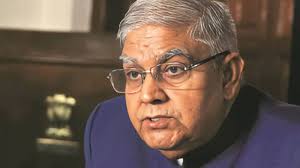
- 27 Jan 2025
In News:
Vice President Jagdeep Dhankhar recently criticized the party whip system, arguing that it curtails the freedom of expression of Members of Parliament (MPs) and enforces servility by mandating strict adherence to the party line. His remarks have sparked a renewed debate on the balance between party discipline and individual autonomy in a parliamentary democracy.
What is a Party Whip?
A whip in parliamentary parlance is both a directive and a designated official of a political party. The directive instructs legislators on voting behavior on specific issues such as bills, motions, or resolutions. The designated whip ensures attendance, adherence, and discipline within the party ranks.
- The term “whip” originated from England’s hunting tradition, where a “whipper-in” kept hounds within the pack.
- The political usage dates back to Edmund Burke in the British Parliament.
- In India, the whip system has been in place since the start of parliamentary governance.
Constitutional and Legal Framework
- The whip system is not mentioned in the Constitution, Rules of Procedure, or any statute, but functions through parliamentary conventions.
- The Anti-Defection Law (52nd Amendment, 1985) enforces the whip by allowing disqualification of MPs/MLAs for defying it, thus preserving political stability and party integrity.
Quorum Requirement: As per Article 100 of the Constitution, quorum in Parliament is one-tenth of the total membership:
- Lok Sabha: 55 members
- Rajya Sabha: 25 members
Types of Whips
- One-Line Whip: Informational—members may abstain.
- Two-Line Whip: Requires presence but does not dictate voting.
- Three-Line Whip: Strictest—mandates attendance and voting as directed.
- Violation can lead to disqualification under the Anti-Defection Law, unless two-thirds of the party members dissent together.
Functions and Significance
- Ensures Attendance: Maintains quorum during critical votes.
- Secures Support: Helps pass or oppose legislation.
- Maintains Discipline: Prevents cross-voting or defection.
- Internal Monitoring: Identifies discontent among MPs and informs party leadership.
- Party Cohesion: Acts as a channel between MPs and party high command.
- Democratic Functioning: Ensures government stability, especially during division voting, where numbers decide the fate of motions like the No-Confidence Motion.
For ruling coalitions, a united stance during such votes is crucial to showcase majority strength.
Chief Whip and Institutional Structure
- The Chief Whip is the most critical functionary in enforcing the whip.
- In the Lok Sabha, the Minister of Parliamentary Affairs usually acts as the government’s chief whip.
- In the Rajya Sabha, it is the Minister of State for Parliamentary Affairs.
- Whips also coordinate which MPs speak, when, and on what issues.
The All-India Whips Conference, held since 1952, allows whips from all parties to discuss coordination strategies and share parliamentary practices.
Criticism and Contemporary Debate
- Critics, including the Vice President, argue that whips limit deliberative democracy, reduce MPs to mere rubber stamps, and suppress individual judgment.
- However, supporters claim that whips are essential to prevent chaos, ensure smooth functioning, and uphold mandated party ideologies, especially in a system where governments often hinge on narrow majorities.
Former Lok Sabha Speaker Sumitra Mahajan defended the whip, stating that MPs elected on a party ticket must uphold the party’s collective ideology and decisions, even if personal disagreement exists.
India’s Journey of Fiscal Consolidation
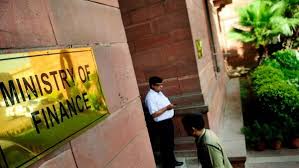
- 27 Jan 2025
In News:
Fiscal Consolidation refers to the strategic management of government finances aimed at reducing fiscal deficits, controlling public debt, and ensuring macroeconomic stability. India’s recent journey in this regard has been marked by a significant transformation, particularly in the post-2014 era.
Background:
In 2013-14, India was labelled as one of the "Fragile Five", largely due to its ballooning fiscal deficit (touching 5% of GDP in a quarter), high inflation, and weakening currency. This tag underscored the urgency of restoring fiscal health.
Post-2014 Measures:
- FRBM Act Revamp: The government recommitted to the Fiscal Responsibility and Budget Management (FRBM) Act, 2003, revising fiscal targets and focusing on fiscal discipline.
- Deficit Reduction: Fiscal deficit was reduced from 4.5% of GDP in FY 2013-14 to 3.4% in FY 2018-19.
- Revenue Boost: Digitization and broader tax reforms helped increase tax receipts from 10% of GDP (FY 2014-15) to 11.8% (FY 2023-24).
- Capex Focus: Capital expenditure nearly doubled from 1.6% of GDP in FY 2014-15 to 3.2% in FY 2023-24, emphasizing infrastructure over consumption.
Pandemic Impact and Recovery:
- During COVID-19, India’s fiscal deficit soared to 9.2% of GDP (FY 2020-21) due to emergency spending.
- Unlike blanket stimulus in some countries, India opted for targeted support (MSMEs, displaced populations, healthcare) while continuing infrastructure investment.
- This strategy avoided long-term inflationary pressure and built long-term productive capacity.
Structural Reforms:
- Production Linked Incentive (PLI) schemes aimed at reducing import dependence and boosting domestic manufacturing.
- Enhanced export competitiveness due to fiscal prudence and macroeconomic stability.
Current Scenario:
- Fiscal deficit reduced to 5.6% of GDP in FY 2023-24, with a target of 4.9% in FY 2024-25, and further narrowing to 4.5% by FY 2025-26.
- States remain a concern: their deficits exceed the 3% of GSDP limit, averaging 3.2% in FY 2023-24, with rising debt levels and declining capex.
FRBM Act & N.K. Singh Committee:
- FRBM Act (2003) aims to cap the fiscal deficit at 3% of GDP.
- The N.K. Singh Committee (2016) recommended:
- Shift from rigid deficit targets to debt as the primary anchor.
- Set up an autonomous Fiscal Council.
- Flexibility via an “escape clause” (up to 0.5% extra deficit during crises).
- Limit borrowings from RBI to specific emergency conditions.
Significance of Fiscal Consolidation:
- Macroeconomic Stability: Controls inflation and keeps currency stable.
- Investment Magnet: Low deficits improve investor confidence.
- Reduced Debt Burden: Less borrowing means less stress on future generations.
- Efficient Governance: Ensures better resource allocation and economic resilience.
Unified Pension Scheme (UPS)
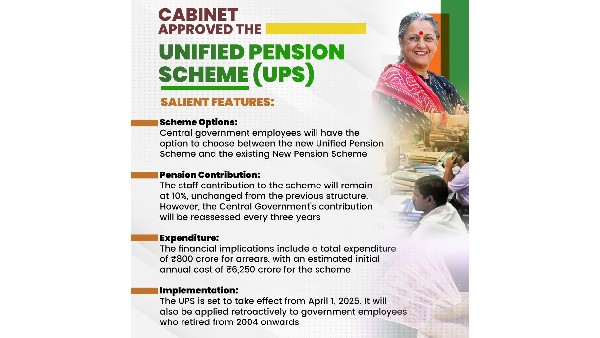
- 27 Jan 2025
In News:
The Ministry of Finance has notified the Unified Pension Scheme (UPS) as an option under the National Pension System (NPS) for Central Government employees, effective April 1, 2025. This reform addresses long-standing concerns about the unpredictability of pension returns under the NPS.
Key Highlights:
- Applicability: Applies to Central Government employees currently under the NPS, including those recruited on or after January 1, 2004, who opt for the UPS.
- Objective: To provide guaranteed post-retirement financial security, addressing grievances regarding the market-linked returns of the NPS.
- Regulatory Framework: The scheme will be regulated by the Pension Fund Regulatory and Development Authority (PFRDA), which will issue detailed operational guidelines.
Pension and Benefit Structure
- Guaranteed Monthly Pension:
- 50% of the average basic pay drawn in the last 12 months prior to retirement.
- Requires completion of 25 years of service.
- Those with 10–25 years of service will receive a proportionate pension.
- Dearness Relief (DR): Periodic adjustments based on inflation trends to maintain pension value.
- Family Pension: In case of death, 60% of the employee's pension will be paid to eligible family members.
- Minimum Pension: Assured ?10,000 per month for those completing at least 10 years of service.
- Superannuation Benefits: Includes a lump sum payout and gratuity at retirement.
Contribution Mechanism
- Employee Contribution: 10% of basic pay.
- Government Contribution: 5% of basic pay (subject to revision based on actuarial evaluations).
Background and Policy Evolution
- The Union Cabinet approved the UPS on August 24, 2024, benefiting nearly 2.3 million Central Government employees.
- The move followed demands from staff unions for guaranteed pensions, and political pressure after several states reverted to the Old Pension Scheme (OPS).
- A high-level committee, led by T.V. Somanathan (then Finance Secretary), was formed in April 2023 to review the NPS framework and design an equitable alternative.
PKC-ERCP: Rajasthan’s River-Linking Project
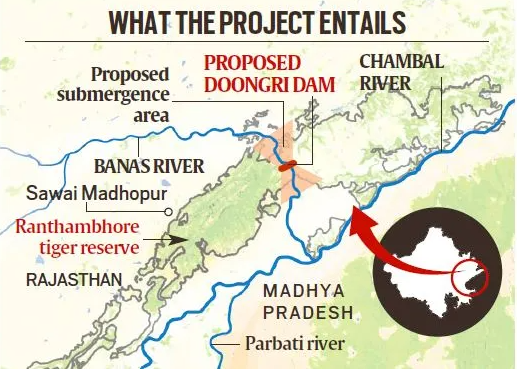
- 25 Jan 2025
In News:
The Parbati-Kalisindh-Chambal-Eastern Rajasthan Canal Project (PKC-ERCP), part of the National Interlinking of Rivers (ILR) programme, aims to address water scarcity in 23 districts of Rajasthan, potentially benefiting 3.45 crore people. However, it has raised serious concerns over its ecological impact, particularly on the Ranthambore Tiger Reserve.
About the PKC-ERCP Project:
Aspect Details
Objective To channel surplus water from the Chambal basin for irrigation, drinking, and industrial use in Rajasthan and Madhya Pradesh
Estimated Cost ?72,000 crore (90% funded by the Central Government)
Water Allocation 4,100 MCM to Rajasthan and 3,000 MCM to Madhya Pradesh
Rivers Involved Chambal, Parbati, Kalisindh, Banas, and tributaries
Major Structure 39 m high, 1.6 km long dam across the Banas River, a Chambal tributary, near Doongri village, ~30 km from Sawai Madhopur
Submergence and Environmental Concerns:
- Total Submergence: ~408.86 sq km in Rajasthan.
- Reservoir Impact: 227 sq km to be submerged under the proposed dam across Banas River.
- Impact on Tiger Reserve:
- 37.03 sq km of the Ranthambore Tiger Reserve (total area: 1,133 sq km) to be submerged.
- This includes parts of Ranthambore National Park (392 sq km) and Keladevi Wildlife Sanctuary (674 sq km).
- May fragment the reserve, disrupting wildlife corridors and tiger movement.
- Ranthambore’s Significance:
- Home to ~57 tigers, it is one of India’s most prominent conservation areas.
- Situated at the Aravalli-Vindhya junction, with rich biodiversity, including leopards, hyenas, sloth bears, and iconic flora like Dhok trees.
- Encompasses the UNESCO-listed Ranthambore Fort and the Great Boundary Fault.
Arguments For the Project:
- Addresses chronic water scarcity in eastern Rajasthan.
- Promotes agricultural productivity, drinking water security, and industrial development.
- Aims to optimize water use by diverting surplus flows.
Arguments Against the Project:
- Biodiversity loss due to habitat submergence and reserve fragmentation.
- Risks to tiger conservation efforts.
- Potential violation of environmental safeguards under the Wildlife Protection Act and Forest Conservation norms.
Long-term ecological costs may outweigh short-term developmental gains.
SEBI’s Sachetisation of Mutual Funds
- 25 Jan 2025
In News:
In January 2025, the Securities and Exchange Board of India (SEBI) proposed the “sachetisation” of mutual fund investments to promote financial inclusion, especially among low-income and first-time investors.
What is Sachetisation?
- Originating from the FMCG sector (e.g., shampoo sachets), sachetisation refers to offering financial products in small, affordable units, enhancing accessibility and affordability.
- In capital markets, it implies micro-level investment options, particularly through low-ticket SIPs (Systematic Investment Plans).
Objectives:
- Promote financial inclusion and empower economically underserved sections.
- Expand mutual fund penetration to semi-urban and rural areas.
- Encourage long-term savings and wealth creation among new investors.
- Reduce dependency on large institutional or foreign investors by broadening the domestic retail base.
Key Features of SEBI’s Sachet SIP Proposal:
Feature Details
Minimum SIP Amount ?250 per month
Eligibility Only for new mutual fund investors
Investment Limit Up to 3 sachet SIPs across different AMCs
Excluded Schemes Debt funds, sectoral/thematic, small-cap, mid-cap equity funds (due to higher risk)
Commitment Period Encouraged to commit for 5 years (60 SIPs), but premature withdrawal allowed
Payment Modes Only via auto-pay mechanisms such as UPI Autopay and NACH
Cost Incentives AMCs to receive subsidies from SEBI’s Investor Education and Awareness Fund
Distributor Incentive ?500 per investor after completion of 24 monthly SIPs
Significance:
- Democratizes investment access by lowering the entry barrier for mutual funds.
- Encourages behavioral shift towards long-term financial planning and discipline.
- Stabilizes domestic markets by broadening and diversifying the retail investor base.
Supports SEBI’s vision of making capital markets inclusive, tech-enabled, and accessible.
Ad Hoc High Court Judges
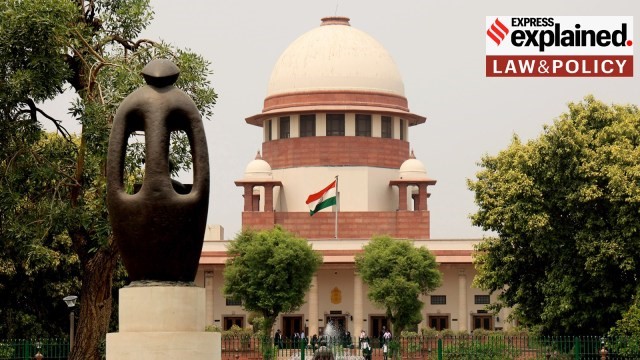
- 24 Jan 2025
In News:
To address the mounting pendency of criminal cases in several High Courts, the Supreme Court of India has suggested invoking Article 224A of the Constitution, which allows the appointment of retired High Court judges on an ad hoc basis.
Constitutional Provision: Article 224A
- Title: Appointment of Retired Judges at Sittings of High Courts.
- Key Provision: The Chief Justice of a High Court, with the consent of the President, may invite retired judges of the same or other High Courts to act as judges temporarily.
- Status: These judges enjoy the powers, jurisdiction, and privileges of regular High Court judges, but are not deemed permanent judges.
Why the Provision is Being Invoked Now:
- Backlog of Cases: Over 40% vacancy rate in High Courts; huge pendency, especially of criminal cases.
- Delays in Regular Appointments: Slow process of regular judicial appointments prompted the Supreme Court to consider alternative mechanisms.
- Underuse of Article 224A: Only three recorded instances of ad hoc appointments since Independence:
- Justice Suraj Bhan – MP High Court (1972)
- Justice P. Venugopal – Madras High Court (1982–83)
- Justice O.P. Srivastava – Allahabad High Court (2007, Ayodhya case)
Judicial Interpretation – Lok Prahari v. Union of India (2021):
- The Supreme Court laid down guidelines for invoking Article 224A.
- The process must be routed through the SC collegium (CJI + 2 senior-most judges).
- Trigger Point for Appointment:
- High Court vacancies exceed 20% of sanctioned strength (excluding pending proposals).
- More than 10% of pending cases are over 5 years old.
Procedure for Appointment:
- Consent: Retired judge must agree to serve again.
- Initiation: Chief Justice of the High Court forwards the name.
- State and Centre: Proposal routed through State CM → Union Law Ministry.
- SC Collegium: Must review and approve the name.
- Executive Clearance: Law Ministry → PM → President for final approval.
Term & Allowances:
- Duration: Typically 2–3 years, renewable if required.
- Number of Judges: Suggested 2–5 ad hoc judges per High Court.
- Remuneration: Entitled to allowances as per Presidential order.
- Status: Have full judicial powers during tenure.
Concerns & Safeguards:
- Fear of using ad hoc appointments as a substitute for regular appointments.
- Therefore, SC mandates that regular appointment process must be underway before invoking Article 224A.
- Periodic review and panel creation of eligible retired judges recommended.
M23 Armed Group
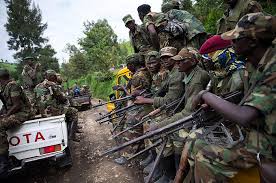
- 24 Jan 2025
In News:
The March 23 Movement (M23), a rebel group active in eastern Democratic Republic of Congo (DRC), has intensified its insurgency in North Kivu province, capturing key areas like Minova and threatening the provincial capital, Goma.
About M23 Armed Group:
- Full Form: March 23 Movement
- Formation: 2012, by mutineers from the Congolese army protesting a failed 2009 peace deal.
- Base of Operations: Eastern DRC, primarily in North Kivu province.
- Activities: Armed rebellion, territorial control, ethnic conflict, disruption of state authority.
External Support:
- Rwandan Involvement:
- UN Reports (2023): Estimated 3,000–4,000 Rwandan troops operating alongside M23.
- Rwanda alleged to have “de facto control” over M23 operations.
- Kigali denies direct territorial aggression claims.
- International Concerns: The group’s resurgence reflects broader regional instability and transnational military dynamics.
Recent Developments (2024):
- Territorial Gains: Capture of Minova; encroachment on Goma, a strategic and densely populated city.
- Humanitarian Crisis:
- Over 2,30,000 displaced since January 2024.
- Influx of injured civilians in hospitals; risk of further displacement and violence.
- Congolese Military Weakness:
- Internal instability and operational setbacks have contributed to M23’s advances.
- The Congolese army acknowledged a “breakthrough” by M23 with external backing.
Geographical Significance of the Region:
- DRC Capital: Kinshasa
- Strategic Location: Borders 9 countries—Angola, Zambia, Tanzania, Burundi, Rwanda, Uganda, South Sudan, Central African Republic, Republic of Congo.
- Topography:
- Rwenzori & Virunga Mountains: Includes active volcanoes (e.g., Mount Nyiragongo).
- Congo River: Vital for transport, hydroelectric power, and biodiversity.
- Natural Resources:
- Rich in cobalt, coltan, gold, and other rare minerals—critical to the global tech industry.
- The mineral wealth of North Kivu is a major driver of prolonged conflict.
Estimation and Measurement of India’s Digital Economy – MeitY Report (2025)
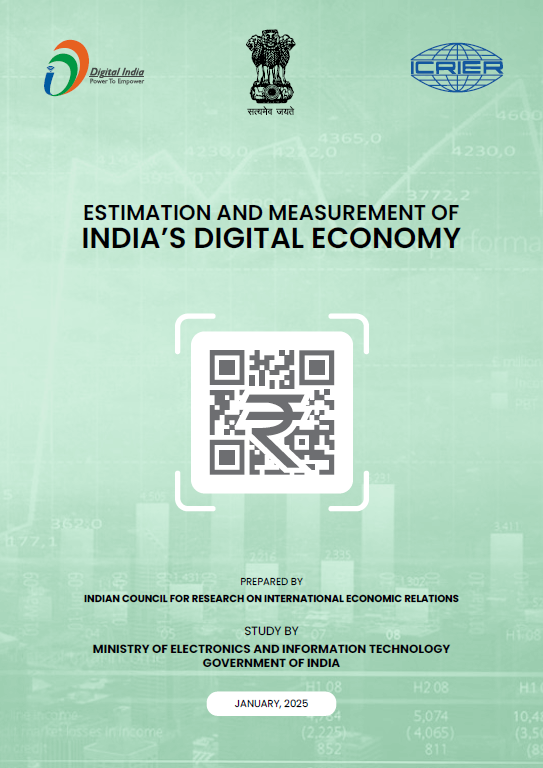
- 23 Jan 2025
In News:
Release of Report ‘Estimation and Measurement of India’s Digital Economy’ by Ministry of Electronics & Information Technology.
Key Highlights:
- Released by: Ministry of Electronics & Information Technology (MeitY)
- Prepared by: Indian Council for Research on International Economic Relations (ICRIER)
- Significance: First credible and current estimate of the digital economy using international frameworks (OECD & ADB).
- India is the first developing country to adopt the OECD framework for measuring the digital economy.
Key Findings (2022–23)
Indicator Details
Size ?31.64 lakh crore (~USD 402 billion), 11.74% of national income (GVA)
Employment 14.67 million workers (2.55% of the workforce)
Projected Share by 2029–30 Nearly 20% of GDP (surpassing agriculture & manufacturing)
Structure of India’s Digital Economy
- Digitally Enabling Industries (7.83% of GVA): ICT services, telecom, manufacturing of digital hardware
- New Digital Industries (2%): Big Tech, digital platforms, intermediaries (e.g., e-commerce, ride-sharing)
- Digitalization of Traditional Sectors (2%): BFSI (Banking, Financial Services, Insurance), trade, education
- Insight: Digital transformation is spreading beyond ICT into traditional sectors.
Frameworks Used
Framework Purpose
OECD Estimating core digital and enabling sectors
ADB Input-Output Broader economic impact via inter-industry linkages
India’s Expansion Includes digital share in BFSI, trade, education – not covered under OECD
Key Drivers of India’s Digital Economy
- Widespread mobile use: 1.14 billion subscribers in India
- High internet traffic: 3rd globally, with avg. 16.9 GB/month
- 5G leadership: 2nd largest 5G smartphone market in 2024
- Aadhaar success: 1.3+ billion biometric IDs issued
- Digital payments boom: 1,644 billion transactions in FY24
- ICT service exports: USD 162 billion (2nd highest globally)
- AI leadership: India leads GitHub AI contributions (23%)
- Startup ecosystem: 3rd highest number of unicorns globally
Future Projections (By 2030)
- Digital economy to reach ~20% of national income
- Growth drivers:
- Expansion of digital platforms & intermediaries
- Deepening digitalization in all sectors
- Greater internet & broadband access
Challenges in Measuring Digital Economy
- Difficulty in defining digital sectors due to their integrated nature
- Conventional national accounting systems are inadequate
- Lack of data from:
- Informal sector digitalization
- Smaller platforms and startups
- Digital shifts in healthcare, logistics, etc.
Importance of This Report
- Policy Formulation: Enables targeted strategies for digital growth
- Business Strategy: Helps identify trends, plan investments
- Global Standing: Puts India among early adopters of robust measurement frameworks
10 years of Beti Bachao Beti Padhao (BBBP)
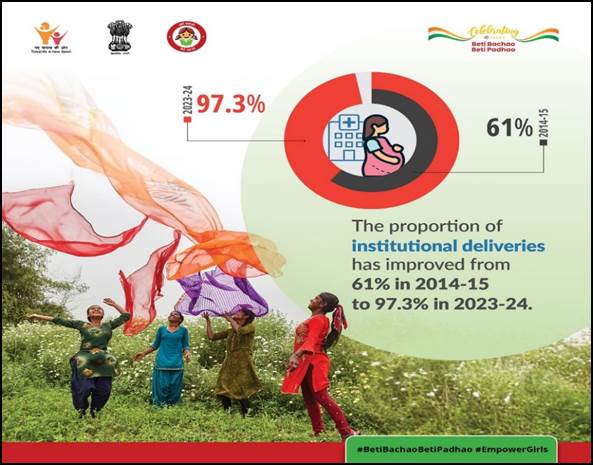
- 23 Jan 2025
In News:
Launched on 22nd January 2015 in Panipat, Haryana, BBBP was initiated in response to the declining Child Sex Ratio (CSR), which stood at 918 girls per 1000 boys (Census 2011). It marked a key step towards gender equality, aiming to curb gender-biased sex-selective elimination and improve the status of the girl child.
Key Highlights:
Core Objectives
- Improve Sex Ratio at Birth (SRB) by two points annually.
- Sustain institutional delivery rate at ≥95%.
- Increase 1st trimester ANC registration and girls' enrollment in secondary education by 1% annually.
- Reduce dropout rates among girls.
- Promote safe menstrual hygiene management (MHM).
Target Groups
- Primary: Young couples, expecting parents, adolescents, households, communities.
- Secondary: Schools, AWCs, health professionals, PRIs, ULBs, NGOs, SHGs, media, and religious leaders.
Implementation Structure
- Type: Centrally Sponsored Scheme (CSS) with 100% Central funding.
- Ministries Involved:
- Women and Child Development
- Health and Family Welfare
- Education
- Financial Assistance (Per District/Year):
- Rs. 40 lakh (SRB ≤918)
- Rs. 30 lakh (SRB 919–952)
- Rs. 20 lakh (SRB >952)
Integration with Mission Shakti (2021–2026)
BBBP now functions under Mission Shakti, which comprises two verticals:
- Sambal (Safety & Security):
- One Stop Centres (OSCs)
- Women Helpline (181)
- Nari Adalat: Alternative dispute resolution
- Samarthya (Empowerment):
- Sakhi Niwas, Palna Creches
- Shakti Sadans (rehabilitation)
- PM Matru Vandana Yojana: Extended support for a second girl child
- SANKALP-HEW: District-level single-window system for all women-centric schemes
Achievements in 10 Years (2015–2025)
- SRB: Improved from 918 (2014-15) to 930 (2023-24)
- Girls’ GER: Rose from 75.5% (2014-15) to 78% (2023-24) in secondary education
- Institutional Deliveries: Increased from 61% to 97.3%
- Kanya Shiksha Pravesh Utsav: Re-enrolled over 1 lakh out-of-school girls
- Economic Empowerment: Integration with skilling initiatives and 70% of PM Mudra loans disbursed to women
- Awareness Campaigns:
- Selfie with Daughter
- Beti Janmotsav
- Yashaswini Bike Expedition
- "Betiyan Bane Kushal" Skill Conference
Sukanya Samriddhi Yojana (SSY) – A Financial Tool for Empowerment
Launched under BBBP, SSY is a small savings scheme to ensure the financial security of girl children.
Key Features
- Eligibility: Indian girl child below 10 years.
- Account: Max 2 per family (exceptions for twins/triplets).
- Deposit Limit: ?250 to ?1.5 lakh/year (15 years).
- Tenure: Account matures 21 years after opening.
- Withdrawals: Up to 50% for higher education after 18 years.
- Tax Benefits: Exempt under Section 80C (EEE status).
Impact
- Over 4.1 crore accounts opened by Nov 2024.
- Promotes long-term savings and financial inclusion.
- Complements BBBP by addressing economic empowerment of girls.
Mission Vatsalya
- Formerly ICPS (2009), then Child Protection Services (2017).
- Merged into Mission Vatsalya in 2021.
- Focuses on:
- Juvenile justice
- Child protection
- Advocacy and rehabilitation
- Ensures “no child is left behind” principle aligned with SDGs.
Pradhan Mantri Matru Vandana Yojana (PMMVY)
- Supports pregnant and lactating mothers:
- ?5,000 in 3 installments + ?1,000 (JSY)
- Now extended to second girl child to promote gender equity.
Targets wage compensation, safe delivery, maternal nutrition, and reduced MMR/IMR.
Diamond Imprest Authorization (DIA) Scheme

- 22 Jan 2025
In News:
The Union Government, under the Foreign Trade Policy 2023, has introduced the Diamond Imprest Authorization (DIA) Scheme to enhance India’s competitiveness in the global diamond trade, promote exports, and protect employment, especially in the MSME sector.
Key Highlights:
Objectives:
- Boost value addition and export growth in the diamond sector.
- Support MSME exporters to compete globally.
- Retain India’s position as a global hub for diamond processing and exports.
- Mitigate recent challenges like export decline, job losses, and global demand shifts.
Key Features of the Scheme:
Feature Details
Type of Diamonds Allowed Natural cut and polished diamonds less than ¼ carat (25 cents)
Eligibility Exporters with Two Star Export House status and minimum $15 million annual exports
Export Obligation 10% value addition on imported diamonds
Duty Exemptions Exempts Basic Customs Duty, Anti-dumping Duty, Countervailing Duty, etc.
Effective Date April 1, 2025
Exclusion Lab-Grown Diamonds (LGDs) not covered
Monitoring Agency Gems and Jewellery Export Promotion Council (GJEPC)
Why the Scheme Was Introduced:
Challenges in the Diamond Sector:
- Global: Falling demand in US, Europe, China; rise in lab-grown diamonds.
- Domestic: High unsold inventory, rising operational costs, reduced credit flow, and high corporate tax.
- Employment Impact: Job losses in the diamond cutting and polishing segment.
International Context:
- Inspired by beneficiation policies in diamond-producing countries like Botswana and Namibia, which mandate local value addition.
Significance:
- Enhances India’s role in the global diamond value chain.
- Provides ease of doing business through duty relief.
- Promotes employment generation, especially for diamond assorters and processors.
- Facilitates inclusive growth by supporting MSMEs in a traditionally export-driven industry.
Way Forward:
- Regulate Lab-Grown Diamonds to prevent market distortion.
- Extend export credit period and consider tax exemptions for foreign diamond sellers.
- Ensure technology upgradation and skill training to sustain global leadership.
One Nation, One Legislative Platform
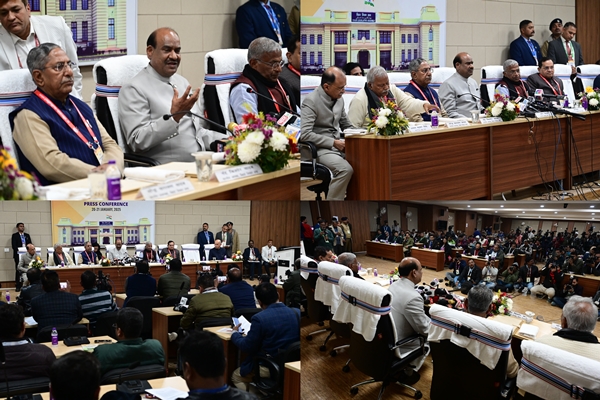
- 22 Jan 2025
In News:
- The 85th AIPOC, held in Patna, Bihar, emphasized enhancing the effectiveness of legislative institutions through reforms in decorum, digitization, and public participation.
- A major outcome was the announcement of the One Nation, One Legislative Platform to digitally integrate legislative bodies across India.
All India Presiding Officers’ Conference (AIPOC):
- Established: 1921; first session held in Shimla.
- Role: Apex platform bringing together Presiding Officers of Parliament and State Legislatures.
- Objective: Strengthen democratic institutions by fostering cooperative federalism, legislative accountability, and improved law-making processes.
2025 Conference Highlights:
- Venue: Historic Bihar Legislature Premises, Patna.
- Key Themes:
- Reducing disruptions and maintaining decorum in legislative houses.
- Promoting qualitative debate and discussion.
- Observing the 75th year of the Constitution with participatory democratic celebrations.
- Resolutions Adopted:
- Formulation of internal code of conduct by political parties.
- Nationwide campaigns involving PRIs, urban bodies, students, NGOs, media, and more to celebrate democratic values.
One Nation, One Legislative Platform (ONOLP):
What It Is:
A national mission to create a unified digital ecosystem integrating the Parliament, state legislatures, and local bodies for better legislative coordination and public access.
Key Objectives:
- Real-Time Data Sharing: Seamless, up-to-date legislative information across institutions—proceedings, bills, debates, etc.
- Transparency & Accountability: Open access to deliberations enables citizen oversight and institutional accountability.
- Public Participation: User-friendly access encourages civic engagement in law-making and governance.
- AI & Tech Integration: Use of Artificial Intelligence for data analysis, decision support, and enhanced efficiency.
- Paperless Legislatures: Digitization of records to promote sustainability and reduce bureaucratic delays.
Implementation Support:
- Spearheaded by the Lok Sabha, with Speaker Om Birla announcing its completion by 2025.
- Includes the creation of a central portal for public and institutional use.
ILO Global Estimates on International Migrant Workers – 2022
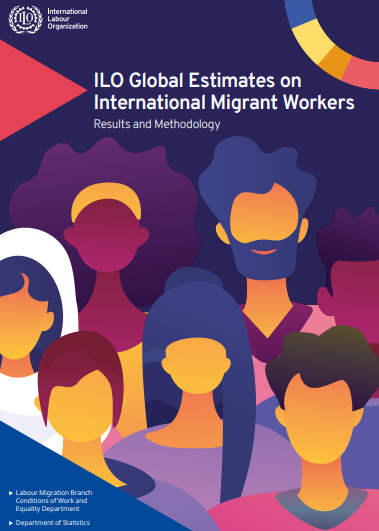
- 21 Jan 2025
In New:
By addressing labour market shortages in host nations and contributing remittances to home countries, International Migrants (IM) continue to make contributions to world economic growth, the fourth edition of ‘Global Estimates on International Migrant Workers’, released by the International Labour Organization (ILO), stated.
Key Findings:
Global Representation:
- International Migrants (IMs) = 4.7% of global labour force - 167.7 million total:
- Employed: 155.6 million
- Unemployed (but seeking work): 12.1 million
- Increase of 30+ million migrant workers since 2013
- Growth rate dropped below 1% annually (2019–2022) due to COVID-19
Gender Composition:
- Male IMs: 61.3% (102.7 million)
- Female IMs: 38.7% (64.9 million)
- Lower female participation attributed to:
- Lower female migration rates globally
- Gender-based barriers in labour markets
- Over-representation in informal and unpaid sectors
Age Distribution:
- Prime working age (25–54 yrs): 74.9%
- Youth (15–24 yrs): 9.3%
- Older adults (55–64 yrs): 12.5%
- Seniors (65+ yrs): 3.4%
Sector-wise Employment:
Sector Share of IMs Notes
Services 68.4% Highest; women dominate (80.7%)
Industry 24.3% On par with non-migrants
Agriculture 7.4% Far lower than non-migrants (24.3%)
Care economy in high-income countries is a major pull for female migrants.
Host Country Distribution:
Region/Income Group % of IMs Notes
High-income countries 68.4% (114 million) Majorly Europe & North America
Upper-middle-income 17.4% (29.2 million)
Arab States 13.3% Declined since 2013
Europe (23.3%) and North America (22.6%) are top destinations. Arab states saw a 3% decline over the decade.
Definition: International Migrants (IMs)
As per the UN: Persons residing in a country different from their place of usual residence for at least one year, regardless of reason or legal status. Includes refugees, asylum seekers, etc.
Role & Contributions of IMs:
- Economic Drivers: Fill labour shortages (healthcare, construction, care work).
- Remittances: Boost home country economies.
- Demographic Support: Help address aging populations in developed nations.
Cultural Exchange: Promote diversity and global connectivity.
Mount Ibu Eruption
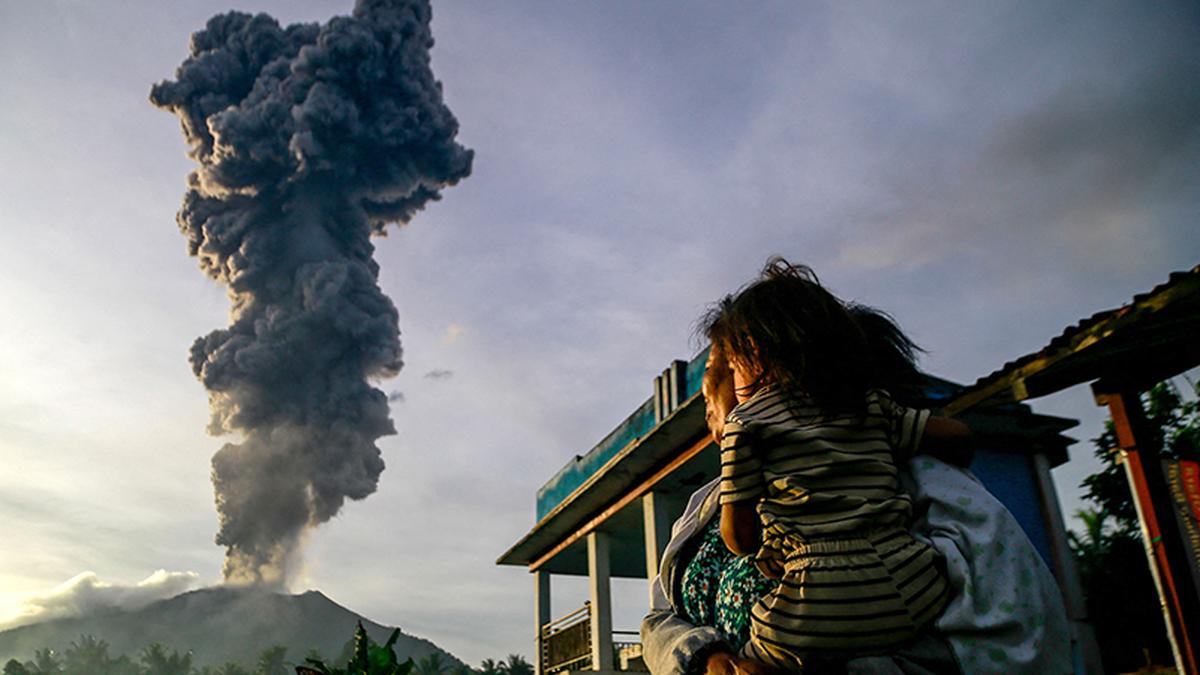
- 21 Jan 2025
In News:
Indonesia’s Mount Ibu erupted 1,000 times this month.
Overview:
- Location: Mount Ibu, Halmahera Island, North Maluku province, Indonesia.
- Volcano Type: Stratovolcano (composite volcano) – steep-sided, conical structure formed by successive layers of lava, ash, and pyroclastic material.
- Tectonic Setting: Located on the Pacific Ring of Fire, a major area of subduction zones with high volcanic and seismic activity.
Volcanic Context – Indonesia:
- Pacific Ring of Fire: Indonesia's location makes it one of the most volcanically active regions globally.
- Other Recent Eruptions:
- Mount Lewotobi Laki-Laki (twin-peaked volcano)
- Mount Ruang
- Both have shown heightened activity, triggering mass evacuations.
Entity Locker

- 21 Jan 2025
In News:
The National eGovernance Division (NeGD), under the Ministry of Electronics and Information Technology (MeitY) has developed Entity Locker, a cutting-edge digital platform designed to transform the management and verification of business/organisation documents.
Key Highlights:
What is Entity Locker?
A secure, cloud-based platform that allows real-time access, encrypted storage, and authenticated sharing of business-related documents.
Who can use it?
Large corporations, MSMEs, startups, trusts, societies, and other organizational entities.
- Key Features:
- 10 GB Encrypted Cloud Storage: Ensures secure document management.
- Real-Time Document Access & Verification: Integrated with government databases.
- Consent-Based Sharing: Ensures data privacy during information exchange.
- Digital Signature Authentication: Enables legally valid and secure transactions.
- Aadhaar-Authenticated Role-Based Access: Promotes accountability in document handling.
- Integration with Government Systems: Linked with entities like:
- Ministry of Corporate Affairs (MCA)
- Goods and Services Tax Network (GSTN)
- Directorate General of Foreign Trade (DGFT)
Benefits:
- Reduces administrative burden and document processing time.
- Enhances compliance with statutory and regulatory requirements.
- Enables faster processes like vendor verification, loan applications, and FSSAI compliance.
- Promotes transparency and secure collaboration among stakeholders.
Significance:
Entity Locker is a pivotal component of India’s Digital Public Infrastructure, reflecting the Union Budget 2024–25 vision of promoting digital governance. It supports the broader goals of the Digital India Programme, aiming for a digitally empowered and efficient economy.
National Panchayat Awards 2024
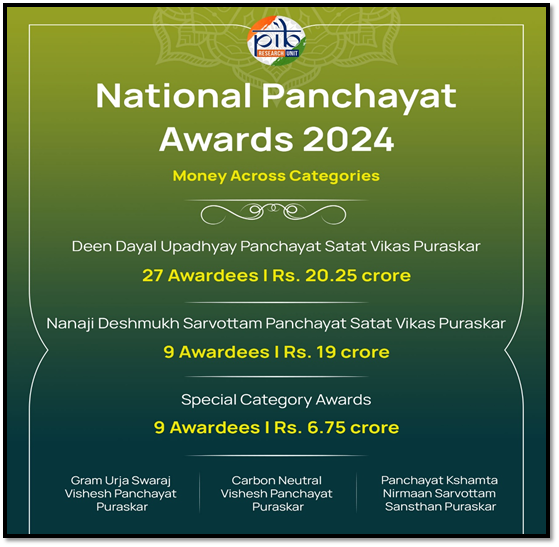
- 20 Jan 2025
In News:
The President of India conferred the National Panchayat Awards 2024 on 45 outstanding Panchayats for their contributions to inclusive growth, environmental sustainability, and rural development. The event was held on 11th December 2024 (postponed from 24th April due to General Elections).
About the Awards
- Launched to commemorate: 73rd Constitutional Amendment Act, 1992, which gave constitutional status to Panchayats as institutions of local self-governance.
- Usual celebration date: 24th April — observed as National Panchayati Raj Day.
- Revamped in 2022 to align with Sustainable Development Goals (SDGs) via Localization of SDGs (LSDGs).
Objectives
- Recognize best practices in rural governance.
- Encourage healthy competition among Panchayats.
- Promote effective implementation of LSDGs and quality service delivery.
Evaluation Structure
- Multi-level assessment: Block → District → State/UT → National level.
- Evaluation based on 9 LSDG themes, including:
- Poverty-Free & Enhanced Livelihoods
- Healthy Panchayat
- Child-Friendly Panchayat
- Water-Sufficient Panchayat
- Clean & Green Panchayat
- Self-Sufficient Infrastructure
- Socially Just & Secured Panchayat
- Panchayat with Good Governance
- Women-Friendly Panchayat
Award Categories
Award Category Focus Area
Deen Dayal Upadhyay Panchayat Satat Vikas Puraskar (DDUPSVP) Top 3 GPs under each LSDG theme
Nanaji Deshmukh Sarvottam Panchayat Satat Vikas Puraskar Top 3 GPs, Block Panchayats & District Panchayats with highest scores across all themes
Gram Urja Swaraj Vishesh Panchayat Puraskar GPs promoting renewable energy adoption
Carbon Neutral Vishesh Panchayat Puraskar GPs achieving net-zero carbon emissions
Panchayat Kshamta Nirmaan Sarvottam Sansthan Puraskar Institutions providing exemplary support to PRIs in implementing LSDGs
Key Highlights of 2024:
- Total Awards: 45 Panchayats
- Women Leadership: 42% of award-winning Panchayats led by women.
- Participation: 1.94 lakh Gram Panchayats competed.
- Prize Money: ?46 crore transferred digitally to awardees.
- Booklet Released: Best Practices of Awardee Panchayats.
- Film Showcased: Highlighting success stories and capacity-building.
State-wise Recognition
- Notable awardees from: Odisha, Tripura, Maharashtra, Uttar Pradesh, Andhra Pradesh, Kerala, Telangana, Assam, etc.
- Tripura & Odisha stood out in total recognitions.
- GPs from Maharashtra, Odisha, and Tripura received special awards for energy and carbon neutrality.
Other Key Initiatives for PRIs
Initiative Purpose
SVAMITVA Scheme (2020) Mapping rural property to provide Record of Rights.
e-Gram Swaraj (e-FMS) Work-based accounting to promote transparency.
mActionSoft Geo-tagging Panchayat assets via GPS-enabled photos.
Citizen Charter Portal “Meri Panchayat Mera Adhikaar” – Service delivery assurance to citizens.
India–Singapore Semiconductor Cooperation
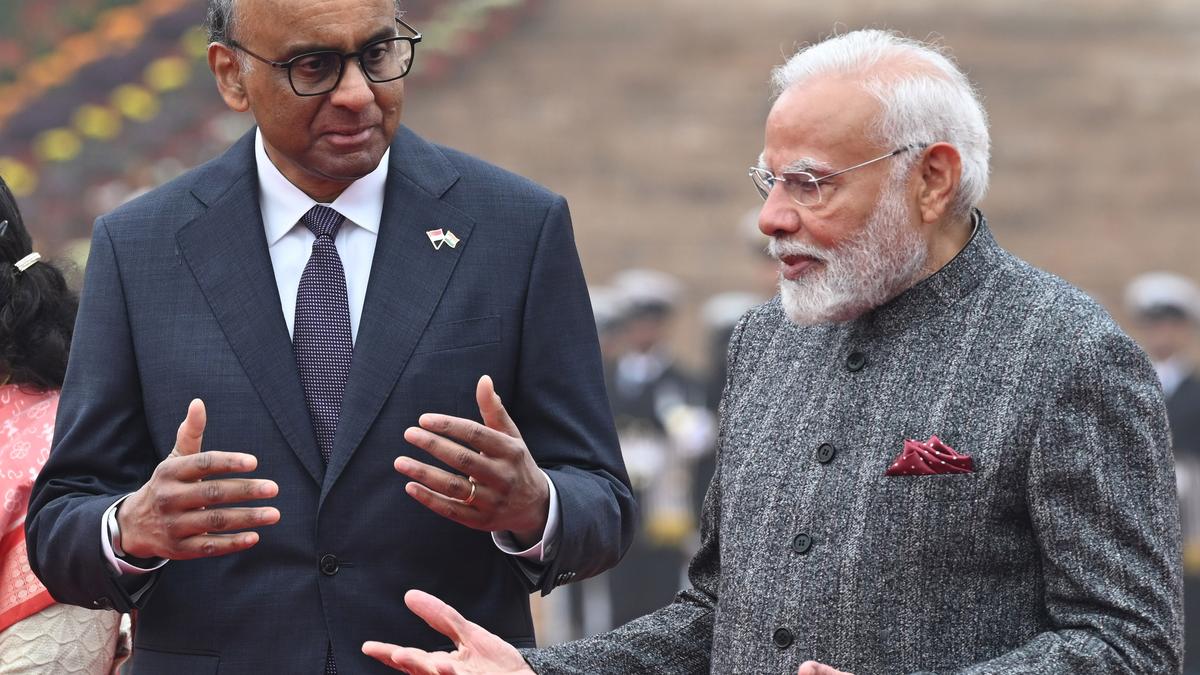
- 20 Jan 2025
In News:
During his 2025 visit to India, Singapore President Tharman Shanmugaratnam announced plans to collaborate with India on semiconductor manufacturing and the creation of a semiconductor ecosystem, marking the 60th anniversary of diplomatic ties between the two nations.
Singapore’s Semiconductor Landscape
- Contribution to Economy: Accounts for ~8% of Singapore’s GDP.
- Global Standing:
- Produces 10% of global semiconductor output.
- 5% of global wafer fabrication capacity.
- 20% of global semiconductor equipment production.
- Comprehensive Ecosystem: End-to-end capabilities from IC design to packaging and testing.
- Infrastructure: Four wafer fabrication parks with advanced facilities.
- Current Limitation: Focused on mature-node chips (28 nm+); lacks high-end logic chip manufacturing (7 nm or below).
India’s Semiconductor Sector
- Market Size (2024): Valued at USD 52 billion; projected to reach USD 103.4 billion by 2030.
- Import Dependency: ~85% of semiconductor needs met through imports.
- Export-Import Gap (2022): USD 5.36 billion (imports) vs. USD 0.52 billion (exports).
India's Advantages:
- Skilled Talent Pool: Large number of STEM graduates.
- Cost Efficiency: Lower manufacturing and operational costs.
- Geopolitical Opportunity: Global supply chain diversification away from China.
Government Initiatives:
- India Semiconductor Mission (ISM)
- Semicon India Programme
- Display & Semiconductor Fab Schemes
- SPECS (Scheme for Promotion of Manufacturing of Electronic Components and Semiconductors)
Foreign Collaborations:
- MoUs with US, Japan, and European Commission.
- Tata–Powerchip (Taiwan) collaboration for a fab in Dholera, Gujarat.
How Singapore Can Support India’s Semiconductor Vision
- Manufacturing Partnerships:
- Collaborations with Singaporean firms for assembly and testing services.
- Access to Singapore's advanced manufacturing technologies.
- Talent Development:
- Academic exchanges in microelectronics and semiconductor engineering.
- Joint research and PhD programs.
- Infrastructure Development:
- Replication of Singapore-style wafer fab parks in India.
- Joint ventures to build specialized semiconductor industrial zones.
- Technology Access & Innovation:
- Transfer of advanced technologies and critical semiconductor materials.
- Collaboration on new-generation tech solutions (e.g., AI chips, advanced computing).
Additional Areas of Bilateral Cooperation
- Digital Economy: Exploring data corridor between GIFT City (India) and Singapore.
- Sustainability: Cooperation on green hydrogen, sustainable aviation fuel, and renewable energy.
Strategic Partnership: Upgraded to Comprehensive Strategic Partnership in 2024.
Internet Governance Internship and Capacity Building (IGICB) Scheme
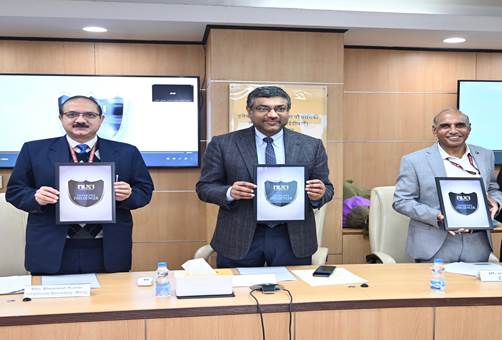
- 20 Jan 2025
In News:
The National Internet Exchange of India (NIXI) announced the launch of its Internet Governance Internship and Capacity Building Scheme. This program aims to build awareness and develop expertise in internet governance (IG) among Indian citizens.
Key Highlights:
Objective:
To develop awareness and build a skilled pool of professionals in Internet Governance (IG) in India, enabling active Indian participation in global digital policy platforms.
Key Features:
- Internship Format:
- Bi-annual internship with two tracks: 3-month and 6-month durations
- Mentorship by experts from:
- International bodies (e.g., ICANN, APNIC, APTLD)
- Academic institutions and retired officials
- Stipend: ?20,000/month
- Outreach Component: Mandatory awareness programs to be conducted by interns
Focus Areas:
- Engagement with I-Star organizations, such as:
- ICANN (Internet Corporation for Assigned Names and Numbers)
- ISOC (Internet Society)
- IEEE (Institute of Electrical and Electronics Engineers)
- IETF (Internet Engineering Task Force)
- Exposure to global best practices and policy mechanisms in digital governance
- Capacity building for inclusive participation in emerging internet issues
Significance:
- Promotes digital policy leadership among Indian youth
- Enhances India’s representation in global internet governance dialogues
- Fosters a tech-savvy and policy-aware workforce for digital India initiatives
About NIXI (National Internet Exchange of India):
- Established: 19 June 2003
- Type: Not-for-profit (Section 8 company)
- Parent Ministry: MeitY
- Mandate:
- Enhance internet adoption and digital infrastructure in India
- Key Services:
- Internet Exchange Points (IXPs): Facilitate domestic internet traffic exchange
- .IN Registry: Manage India’s country code top-level domain (.in)
- IRINN: Allocate IPv4 and IPv6 resources within India
Capacity Building & Training: Promote internet-related knowledge and skills
Interest Equalisation Scheme (IES)

- 19 Jan 2025
In News:
- Launched in April 2015, the Interest Equalisation Scheme (IES) offers subsidised interest rates on pre- and post-shipment export credit to Indian exporters, particularly MSMEs.
- The Commerce Ministry has sought a Rs 3,000 crore extension of the scheme beyond December 2024, with emphasis on supporting MSME exporters amidst global economic challenges.
Objectives of IES:
- Reduce Cost of Credit: Offers 3% to 5% interest subvention to make export credit affordable.
- Boost Export Competitiveness: Enables Indian exporters, especially MSMEs, to match international pricing.
- Encourage Export Diversification: Supports MSMEs in exploring new markets and products.
- Enhance Financial Inclusion: Promotes access to formal credit systems for small exporters.
Key Features:
- Interest Subsidy:
- 3% for MSME manufacturer exporters.
- 2% for merchant and manufacturer exporters of 410 specified tariff lines.
- Coverage: Initially limited to select products, later extended to all MSME exporters.
- Implementation:
- Managed by the RBI, in coordination with DGFT and authorized banks.
- Subsidy reimbursed to banks offering export credit at reduced rates.
- Banks exceeding Repo Rate + 4% are excluded.
Need for Extension:
- The scheme expired in December 2024, but exporters are demanding continuation due to:
- Rising global inflation and logistics disruptions (e.g., Red Sea crisis).
- Increase in credit duration demands from foreign buyers (120–150 days).
- Decline in export credit availability despite higher demand.
- FIEO reports a drop in outstanding export credit from ?2.27 lakh crore (2023) to ?2.17 lakh crore (2024).
- MSMEs operate on thin margins, and the subvention can make or break deals.
Significance for MSMEs:
- MSMEs contribute ~45% to India’s total exports and often struggle with high borrowing costs and limited financial access.
- Affordable credit via IES allows MSMEs to:
- Remain price competitive.
- Take larger and longer-term orders.
- Invest in product innovation and value addition.
- Improve market diversification and resilience.
Challenges in Accessing Credit:
- Stringent eligibility norms and collateral requirements.
- Complex administrative procedures for availing benefits.
- Limited awareness among small enterprises about the scheme.
- Slow disbursal and inconsistent application by banks.
Policy Implications and the Way Forward:
- A revamped, MSME-focused IES can ensure inclusive growth and boost India’s export-led development.
- Calls for:
- Simplification of procedural norms.
- Higher interest subvention limits or removal of caps (e.g., ?50 lakh per IEC holder).
- Longer validity (multi-year horizon) for predictability and planning.
- Aligns with the broader goals of Atmanirbhar Bharat, Make in India, and achieving $1 trillion in exports by 2030.
Nigeria admitted as BRICS Partner Country
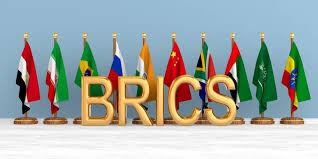
- 19 Jan 2025
In News:
- Nigeria has been admitted as the 9th "Partner Country" of the BRICS grouping under Brazil’s presidency in 2025.
- Other BRICS partner countries include Belarus, Bolivia, Cuba, Kazakhstan, Malaysia, Thailand, Uganda, and Uzbekistan.
- A "partner country" in BRICS is allowed to attend summits, ministerial meetings, and participate in joint initiatives, but does not have formal membership or decision-making power.
About Nigeria’s Role
- Nigeria has the 6th largest population globally and the largest in Africa.
- It is the 4th largest economy in Africa, often termed the "Giant of Africa".
- Nigeria plays a significant role in South-South cooperation and reform of global governance structures, aligning with BRICS' strategic objectives.
About BRICS
- Founded: 2009 by Brazil, Russia, India, and China; South Africa joined in 2010.
- New Full Members (as of 2023): Iran, Egypt, Ethiopia, UAE, and Indonesia (effective Jan 2025).
- Membership Invitations: Saudi Arabia has been invited but not yet accepted.
- Applicants: Turkey, Azerbaijan, Malaysia have formally applied.
- Three Pillars of Cooperation:
- Political and Security
- Economic and Financial
- Cultural and People-to-People Exchanges
- Represents ~40% of global population and ~37.3% of global GDP.
India has hosted BRICS Summits in 2012 (4th), 2016 (8th), and 2021 (13th).
Rupee Depreciation
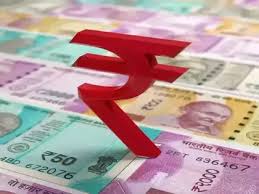
- 18 Jan 2025
In News:
The Indian rupee has recently experienced sharp devaluation against the US dollar after a period of relative stability. This shift is attributed to several factors, including capital outflows, rising import costs, and RBI’s evolving policy stance.
Understanding Exchange Rate Regimes
Exchange rates are classified into:
- Fixed Exchange Rate: The central bank maintains a constant exchange rate by actively managing reserves.
- Floating Exchange Rate: Market-driven rates with minimal intervention.
- Managed-Floating Exchange Rate: A blend of market forces and central bank intervention.
India has largely pursued a managed-floating exchange rate regime. The RBI has historically responded to excess demand by depreciating the rupee while selling forex reserves and, under excess supply conditions, resisted rupee appreciation to maintain export competitiveness.
Post-COVID Exchange Rate Shift
Between 2022 and November 2024, the RBI temporarily adopted a strategy resembling a fixed exchange rate regime to stabilize the rupee. However, amid rising capital outflows and increased import costs, the RBI recently reverted to its managed-float approach, allowing the rupee to depreciate.
Causes of Rupee Depreciation
- Internal Factors:
- Rising inflation reduced the rupee's real value and increased production costs.
- A widening trade deficit due to higher crude oil imports heightened demand for foreign currency.
- Persistent fiscal imbalances further pressured the rupee.
- Policy ambiguity in the RBI’s stance added market uncertainty.
- External Factors:
- Capital outflows driven by global uncertainties and rising US interest rates.
- Geopolitical tensions (e.g., Russia-Ukraine war) increased India’s import bill.
- The US dollar's strength amid aggressive Federal Reserve rate hikes further weakened the rupee.
Implications of Rupee Devaluation
- Positive Effects:
- Boost to Exports: A weaker rupee makes Indian goods cheaper, enhancing export competitiveness if supported by real exchange rate depreciation.
- Adverse Effects:
- Inflationary Pressures: Higher import costs increase consumer prices.
- Reduced Purchasing Power: Increased costs are often passed on to consumers.
- Foreign Debt Servicing: A depreciated rupee raises debt repayment costs for Indian firms and the government.
- Investor Sentiment: Currency instability diminishes foreign investor confidence, triggering further capital outflows.
Structural Constraints in the Indian Economy
- Divergence between NEER and REER:
- Since the mid-2010s, India's Nominal Effective Exchange Rate (NEER) depreciated while the Real Effective Exchange Rate (REER) appreciated. This divergence undermines export competitiveness, as rising domestic prices offset nominal depreciation benefits.
- Rising Markups:
- Non-financial firms increased their markups on variable costs, contributing to inflation and nullifying the advantages of currency depreciation for exports.
Policy Responses and Recommendations
- RBI Interventions:
- Forex market interventions to manage demand-supply imbalances.
- Interest rate adjustments to attract capital inflows and stabilize the rupee.
- Enhanced forex reserve management to mitigate excessive volatility.
- Fiscal Strategies:
- Reducing Import Dependency: Boost domestic production of high-demand goods like crude oil substitutes.
- Export Incentives: Strengthen export sectors through subsidies, incentives, and improved infrastructure.
- Encouraging Long-Term FDI: Promoting stable investment environments for sustained capital inflows.
- Structural Reforms:
- Policies that enhance domestic production, reduce reliance on volatile foreign portfolio investments (FPIs), and maximize remittances can stabilize the rupee in the long term.
Fast Track Immigration FTI-TTP
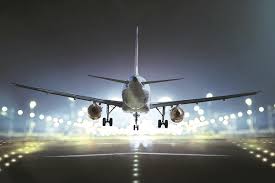
- 17 Jan 2025
In News:
The Government of India is launching the Fast Track Immigration Trusted Traveller Program (FTI-TTP) to streamline immigration at seven major airports.
Key Highlights:
- The initiative, inaugurated by Union Home Minister Amit Shah, aims to enhance the travel experience for Indian nationals and Overseas Citizen of India (OCI) cardholders.
- This comes seven months after the programme was first introduced at Indira Gandhi International (IGI) Airport, New Delhi. The airports included in this initial phase are: Mumbai, Chennai, Kolkata, Bengaluru, Hyderabad, Cochin and Ahmedabad
Objectives of FTI-TTP
- Provide seamless and secure immigration services.
- Reduce human intervention using automated e-gates.
- Align with the Viksit Bharat@2047 vision for modern infrastructure.
How the Programme Works
The FTI-TTP simplifies immigration with automated e-gates. Travellers must complete a one-time online registration to enroll. The process involves:
- Online Registration: Submit personal details and upload necessary documents via the official portal (https://ftittp.mha.gov.in).
- Biometric Submission: Fingerprints and facial images must be submitted at an airport or Foreigners Regional Registration Office (FRRO).
- Immigration Clearance via E-Gates:
- Passengers scan their boarding passes and passports at e-gates.
- Biometrics are automatically verified.
- Upon authentication, the e-gate opens, granting clearance.
Validity: Registration is valid for five years or until the registered passport expires, whichever comes first.
Who is Eligible?
The first phase of the FTI-TTP is open to:
- Indian nationals.
- OCI cardholders aged between 12 and 70 years.
- Children aged 12-18 can register using their parents’ email/phone number.
- ECR (Emigration Check Required) passport holders are not eligible.
Documents Required for Registration
- Passport-sized photograph (as per Indian passport specifications).
- Scanned copy of passport (front and back pages).
- Proof of current address.
- OCI card details (if applicable).
Key Points to Note
- Registration may take up to a month due to verification by field agencies.
- Applications with incorrect or outdated information may be rejected.
- In case of passport loss or expiry, travellers must reapply and submit fresh biometrics.
- Passports must have at least six months’ validity at the time of applying.
- For support, travellers can reach out via email at india.ftittp-boi@mha.gov.in.
Implementation Phases
The FTI-TTP will be implemented in two phases:
- Phase 1: Covers Indian citizens and OCI cardholders.
- Phase 2: Will extend to foreign travellers.
- The programme will be expanded to 21 major airports across the country.
Comparison with Similar Global Programmes
Several countries have implemented similar fast-track immigration systems:
United States: Global Entry
- Introduced in 2008.
- Offers self-service kiosks for pre-approved travellers.
- Requires background checks and in-person interviews.
United Kingdom: Registered Traveller Service
- Launched in 2015.
- Allows frequent visitors from select countries, including India, to use e-gates.
- Requires visa eligibility or multiple prior visits.
European Union: Smart Borders Initiative
- Implemented in 2016, with full deployment expected by 2024.
- Pre-registers biometric data for faster processing at Schengen Area borders.
Australia: SmartGate
- Started in 2007 for Australian and New Zealand passport holders.
- Uses automated kiosks for identity verification via passport scans and photos.
Saudi Arabia: Smart Travel System
- Launched in 2019.
- Uses automated e-gates for faster immigration clearance.
- Expanding as part of Vision 2030 to improve travel experience, particularly for Hajj pilgrims.
Eighth Pay Commission
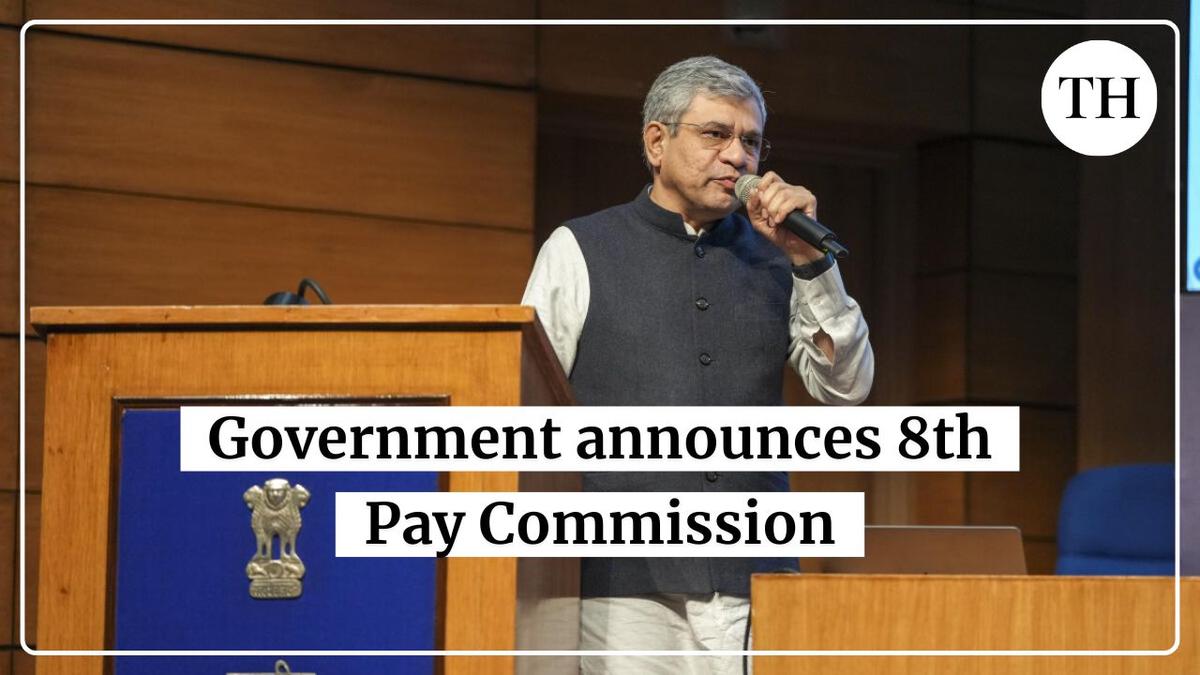
- 17 Jan 2025
In News:
The Union government has approved the constitution of the Eighth Pay Commission, benefiting 50 lakh central government employees and 65 lakh pensioners, including serving and retired defence personnel. The decision, taken ahead of the Delhi Assembly elections, aims to address long-standing demands from trade unions and employee organizations.
Key Features of the 8th Pay Commission
- Early Constitution: Although the Seventh Pay Commission's term ends in 2026, the early establishment of the Eighth Pay Commission ensures timely recommendations and implementation.
- Composition: The commission will have a Chairperson and two members, typically led by a retired Supreme Court judge.
- Terms of Reference (ToR):
- Revision of Pay: Recommend updates to salary structures and allowances.
- Addressing Pay Disparities: Resolve wage differences across various cadres.
- Market Parity: Align pay structures with industry standards.
- Pension and Retirement Benefits: Improve pension schemes and adjust them for inflation.
- Economic Impact Analysis: Assess how salary hikes contribute to economic growth.
- Stakeholder Consultations: Engage with governments and other stakeholders before finalizing recommendations.
Economic Implications of the 8th Pay Commission
- Employee Well-being: Higher wages will enhance the quality of life for government employees.
- Boost to Consumption: Increased salaries are expected to stimulate demand and support economic expansion.
- Ripple Effect on PSUs & States: Many public sector undertakings and state governments follow the central pay commission’s recommendations, potentially leading to wider economic benefits.
- Fiscal Considerations: The implementation of the Seventh Pay Commission in 2016-17 led to an expenditure increase of ?1 lakh crore. A similar rise in 2026-27 could impact fiscal space for capital expenditures.
Challenges and Concerns
- Implementation Delays: Past commissions have taken two years to submit recommendations, which could push implementation beyond 2027.
- Living Wage & Pension Issues: Existing formulas for minimum wage and pension calculations may need revision to reflect rising healthcare, education, and digital access costs.
- Financial Burden on the Exchequer: A significant increase in revenue expenditure could limit the government’s ability to invest in infrastructure and development projects.
Does ‘Blood Money’ Have a Legal Standing?
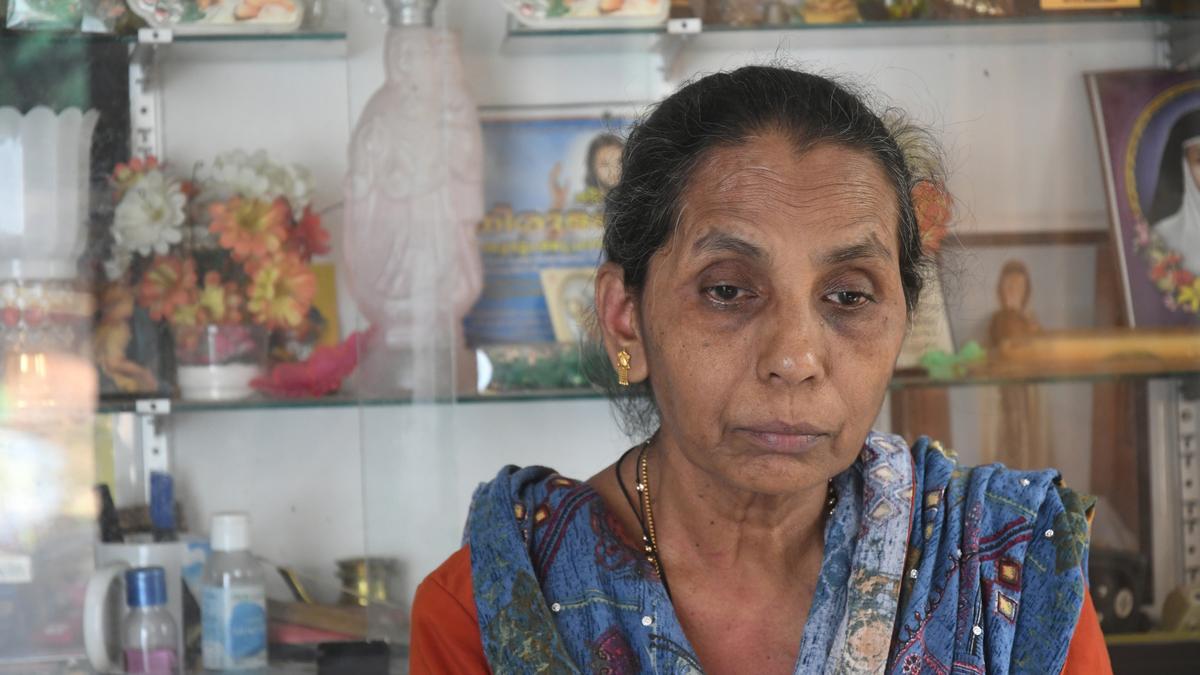
- 16 Jan 2025
In News:
The concept of ‘blood money’ has come under scrutiny recently, especially in the context of the death sentence awarded to Indian nurse Nimisha Priya from Kerala in Yemen. This case, where the focus is on monetary compensation paid to the victim’s family, has sparked renewed discussions on the practice of blood money.
What is ‘Blood Money’?
‘Blood money’ or diya is a term used in Islamic Sharia law and refers to a sum of money that the perpetrator of a crime must pay to the victim or the victim’s family, typically in cases of unintentional murder or homicide. The custom is designed to offer compensation to the family for the loss of income and alleviate their suffering, rather than placing a price on human life. This practice allows the victim’s family to forgive the accused and avoid retribution, called qisas, under the Sharia.
However, even when blood money is paid, the community or state retains the authority to impose a penalty or punishment, which could include imprisonment or other penalties, based on the seriousness of the crime.
How Does Blood Money Figure in Islamic Sharia Law?
In Islamic law, the amount of blood money varies based on several factors such as the victim’s gender, religion, and nationality. The following examples demonstrate the application of blood money in different Islamic countries:
- Saudi Arabia: In Saudi Arabia, blood money is part of traffic regulations, where the perpetrator must pay compensation to the heirs of victims who die in road accidents. While a Sharia court determines the amount of compensation, the police handle the determination of the guilty party. In workplace accidents, a special committee sets the amount. Saudi Arabia has considered reforming its laws to ensure equal compensation for men and women, Muslims and non-Muslims. However, efforts to amend the laws have not yet been fully implemented.
- Iran: In Iran, blood money differs based on the gender and religion of the victim. A woman’s compensation is typically set at half of that of a man’s. While the Supreme Court of Iran upheld a law to equalize compensation for all individuals in 2019, full implementation of the law has yet to be realized.
- Pakistan: Pakistan has incorporated provisions for diya and qisas in its legal system through the Criminal Laws (Amendment) Ordinance, 1991, aligning its practices with those of Islamic law.
- Yemen: In Yemen, parties involved can negotiate compensation, with judicial oversight ensuring fairness.
India’s Stand on ‘Diya’ and Blood Money
India does not include the provision for blood money in its formal legal framework. However, a similar concept exists in the form of plea bargaining, which allows the accused to negotiate with the prosecution in exchange for a reduced sentence or charge. Plea bargaining involves the defendant pleading guilty to a lesser offense in return for a concession, either in terms of the charges or the sentence.
Plea Bargaining in India:
Introduced under the Criminal Law (Amendment) Act, 2005, plea bargaining was added to the Code of Criminal Procedure, 1973. While it bears some resemblance to blood money in that it allows for compensation to the victim, it has significant limitations:
- It can only be applied to crimes punishable by imprisonment of less than seven years.
- It is not applicable to heinous crimes such as murder or rape, or offenses involving women or children under 14.
- The accused must voluntarily agree to plead guilty, with no coercion involved.
While plea bargaining may include compensation under Section 265E of the Code, discussions continue to refine this provision to make it more inclusive, similar to the reforms seen in Islamic countries regarding blood money.
Historical Practices Similar to Blood Money
Throughout history, various cultures have had practices similar to blood money. These include:
- Brehon Law (Ireland): In the 7th century, Brehon law established the concept of Éraic (body price) and Log nEnech (honor price). These were compensation systems that allowed for the amicable resolution of crimes, avoiding capital punishment.
- Galanas (Wales): Galanas in Welsh law determined compensation based on the victim's social status, where a blood fine was required in cases of murder, unless the killing was justified.
- Wergeld (Germany): The Wergeld system in early medieval Germany required compensation for homicide or grave offenses, often in monetary terms.
- Other Medieval States: Several medieval states established a standard payment for the victims’ families in the event of homicide or serious crimes, much like blood money.
Cases of Indians Pardoned with Blood Money
India has witnessed instances where blood money has been invoked for Indian nationals facing death sentences abroad:
- Arjunan Athimuthu (Kuwait, 2019): Arjunan’s death sentence was commuted to life imprisonment after his family paid ?30 lakh in blood money.
- Abdul Rahim (Saudi Arabia): Abdul Rahim, convicted for the murder of a Saudi boy in 2006, was pardoned after ?34 crore in blood money was paid. However, he has not been released from prison yet.
- UAE Cases:
- In 2017, 10 Indians were pardoned after paying 200,000 dirhams as blood money.
In 2009, 17 Indians on death row for the murder of a Pakistani national were pardoned after a blood money amount of nearly ?4 crore was paid.
US AI Hardware Export Restrictions and Impact on India

- 16 Jan 2025
In News:
Days before demitting office, the Joe Biden administration has released an expansive regulatory framework on the export of artificial intelligence (AI) hardware such as graphics processing units (GPUs), which could have far-reaching consequences for India’s AI ambitions.
Three-Tier Framework for AI Hardware Export Restrictions
- Tier 1: Closest US Allies
- Countries: Australia, Belgium, Canada, South Korea, UK, etc.
- No restrictions on computing power deployment.
- Minimal security requirements.
- Impact: Free access to AI technology for these nations.
- Tier 2: Majority of Countries (Including India)
- Countries: India, Brazil, South Africa, etc.
- Restrictions: Limited to importing approximately 50,000 advanced AI chips (around $1 billion) through 2027.
- Potential to Double Cap: If countries sign agreements to uphold strict security standards.
- Impact on India:
- Short-Term: Likely to fulfill current demand for 10,000 GPUs for the IndiaAI Mission.
- Long-Term: Challenges in scaling AI infrastructure, with possible delays in large AI data centers and difficulty acquiring large-scale GPUs.
- Tier 3: Countries of Concern (Restricted Nations)
- Countries: Russia, China, North Korea, Iran, etc.
- No Access to US AI Technology: Nearly total prohibition of AI tech exports.
Special Provisions for India and China
- General Validated End User (GVEU) status for India and China:
- India: Authorisation for civilian and military use, excluding nuclear applications.
- China: Only civilian use permitted under similar conditions.
Why the US Imposed These Restrictions?
- National Security: Prevent adversaries (China, Iran, Russia) from acquiring advanced AI technologies.
- US Technological Leadership: To protect US AI leadership and prevent loss of competitive edge.
- Trusted Ecosystem: Build secure and trusted AI environments for allied nations.
Impact on India
- Short-Term:
- IndiaAI Mission: Current procurement of 10,000 GPUs unlikely to be affected.
- Subsidized GPUs: Available for startups, academia, and researchers.
- Long-Term Concerns:
- Licensing Uncertainties: Possible delays in large-scale AI deployments and AI data centers.
- Impact on Large Firms: Companies like Reliance and Yotta may face challenges scaling up AI compute infrastructure.
- National AI Mission Challenges: Difficulty in acquiring enough GPUs for large-scale AI projects beyond 2027.
- Strategic Leverage: US could use AI export restrictions to negotiate trade deals or tariff adjustments.
Nvidia’s Criticism of the AI Diffusion Rules
- Overreach and Bureaucratic: Nvidia criticized the 200+ page regulatory framework as excessive, secretive, and bureaucratic.
- Harming US Competitiveness: Claims that the rules would hinder US innovation and global leadership, weakening the competitiveness of the US semiconductor and software industries.
- Contrast with Trump’s Approach: Praises the earlier Trump administration for fostering AI growth through industry competition without compromising national security.
Enforcement of the Rules
- Regulatory Control: Managed by the US Bureau of Industry and Security (BIS) under the Department of Commerce.
- Technology Access: Ensures AI chips and models do not reach adversaries or nations posing security risks.
Potential Impact on India’s AI Strategy
- AI Hardware Infrastructure: Challenges in large-scale AI hardware deployment.
- Competitive Disadvantage: Potential delays or downsizing of AI data centers could affect India’s competitiveness in AI technology.
- Strategic Partnerships: India may need to secure General National Validated End User authorizations to ensure uninterrupted access to advanced chips.
- AI Market Growth: India’s AI market projected to grow to $17 billion by 2027, with an annual growth rate of 25%-35%.
Ayushman Bharat Pradhan Mantri Jan Arogya Yojana (AB PM-JAY)
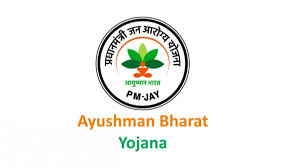
- 15 Jan 2025
In News:
Odisha has become the 34th state to implement the Ayushman Bharat Pradhan Mantri Jan Arogya Yojana (AB PM-JAY). The National Health Authority (NHA) of the Union Ministry of Health signed a Memorandum of Understanding (MoU) with the Department of Health and Family Welfare, Government of Odisha to onboard the state under the scheme.
Key Highlights:
- The scheme will be implemented alongside the existing Gopabandhu Jan Arogya Yojana in Odisha.
- It provides health coverage of Rs. 5 lakh per family per annum, with an additional Rs. 5 lakh for women members.
- Approximately 1.03 crore families will be covered under the scheme.
- Shri JP Nadda, Union Health Minister, emphasized that the scheme is the world’s largest and fastest-growing health coverage initiative.
- Shri Mohan Charan Majhi, Chief Minister of Odisha, highlighted that people will now have access to cashless treatment in over 29,000 empaneled hospitals.
About Ayushman Bharat PM-JAY:
- Launched in 2018 under the Ministry of Health & Family Welfare (MoH&FW).
- Targets 12 crore families (~55 crore beneficiaries).
- Provides cashless hospital coverage for secondary and tertiary care.
- Fully funded by the government, with cost-sharing between the Centre and states.
- Covers nearly 2,000 medical procedures, including major surgeries.
Since its inception, over 8.19 crore hospital admissions have been recorded, with ?1.13 lakh crore spent on healthcare for marginalized sections.
Iran's Capital Relocation
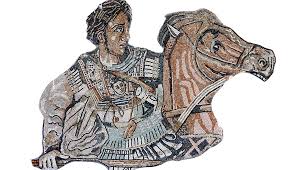
- 15 Jan 2025
In News:
Iran has announced plans to relocate its capital from Tehran to the Makran coastal region due to economic and environmental concerns.
Reasons Behind Relocation
- Overcrowding and Resource Constraints: Tehran, the capital for over 200 years since the Qajar dynasty (1794-1925), faces overpopulation, air pollution, water scarcity, and energy shortages.
- Strategic Importance of Makran: Located in Sistan and Baluchestan Province, Makran’s proximity to the Gulf of Oman enhances its potential for economic development.
- Economic and Maritime Significance: Home to key ports like Chabahar, Makran is vital for Iran’s petroleum reserves and coastal trade.
- Geopolitical Considerations: The development of Makran as an international trade hub could strengthen Iran’s economic ties with Central Asia and the Indian Ocean region.
About Makran
- Geographical Overview: A semi-desert coastal plateau shared by Pakistan and Iran, bordered by the Arabian Sea and the Gulf of Oman.
- Key Ports and Trade Routes: Gwadar (Pakistan) and Chabahar (Iran) serve as critical gateways to the Strait of Hormuz, a global oil supply route.
Alexander’s Invasion and Makran’s Historical Significance
Background of Alexander’s Invasion (327–325 BCE)
- Entry into India: Alexander, King of Macedonia (336-323 BCE), entered India via the Khyber Pass after conquering Kabul.
- Key Battles:
- Battle of Hydaspes (Jhelum): Faced and defeated King Porus, later reinstating him as an ally.
- Retreat at Hyphasis (Beas River): His army, exhausted and wary of the Nanda Empire’s strength, refused to march further east.
The Gedrosian Desert March
- Extreme Hardships: While retreating through the Makran Desert, Alexander lost a third of his army to dehydration, starvation, and exhaustion.
- Comparison with Cyrus the Great: Unlike Cyrus II, who failed to cross the desert, Alexander’s army endured the harsh terrain, albeit with heavy casualties.
Impact of Alexander’s Invasion on India
- Cultural and Trade Exchanges: Facilitated early Indo-Greek interactions and opened key trade routes linking South Asia and Europe.
- Greek Settlements: Established cities like Alexandria (Kabul) and Boukephala (Jhelum), influencing local governance and trade.
- Mauryan Expansion: Weakened regional rulers enabled Chandragupta Maurya to establish the Mauryan Empire.
- Influence on Art and Culture: Indo-Greek fusion led to the Gandhara School of Art, integrating Greek and Indian artistic traditions.
Israel-Hamas Ceasefire and Hostage Release Deal
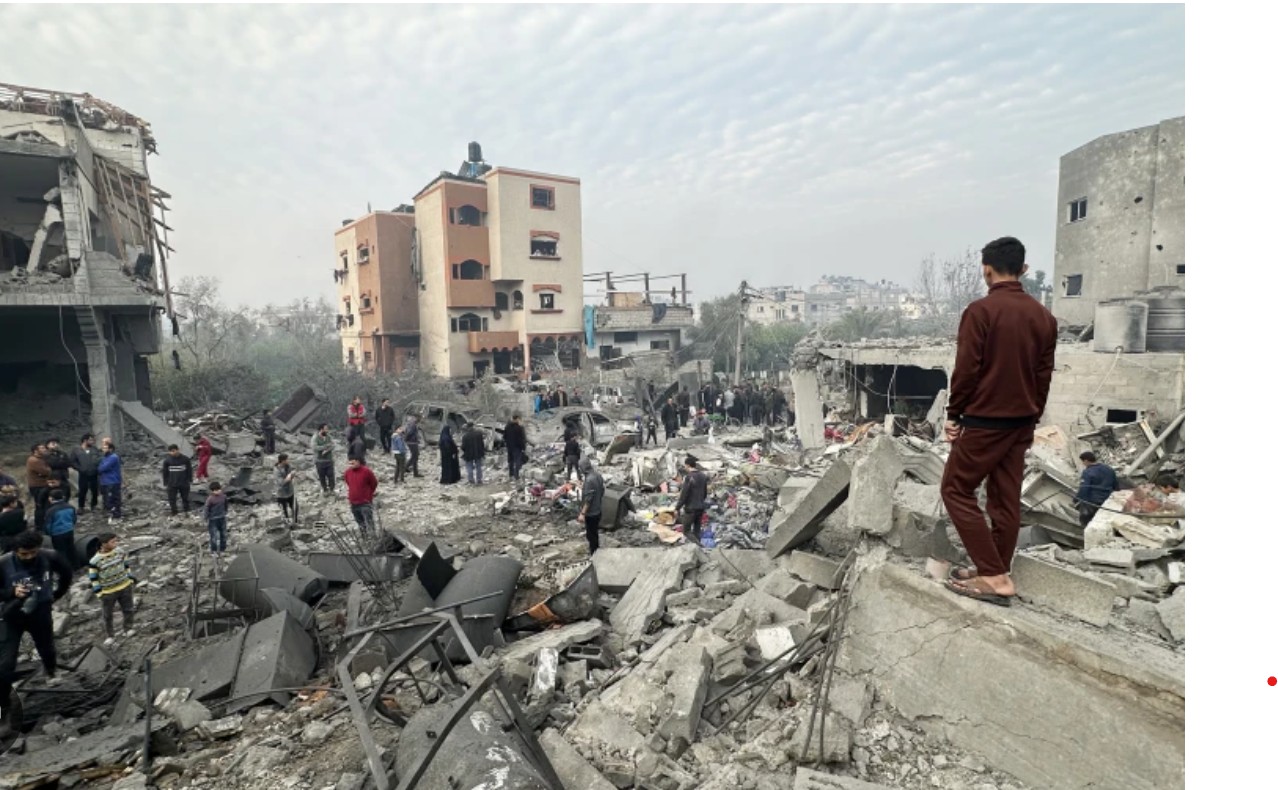
- 14 Jan 2025
In News:
Israel and Hamas have agreed on a Gaza ceasefire and hostage release deal after 15 months of war.
Key Highlights:
Ceasefire Agreement Details:
- Location: The deal was brokered in Doha, Qatar.
- Approval Process: The deal must be approved by Israel’s Cabinet to take effect.
- Mediators: The agreement was negotiated by Qatar, Egypt, and the United States, with their involvement ensuring the implementation of the deal.
Phases of the Deal:
- First Phase (42 Days):
- Release of 33 hostages by Hamas, including women, children, and elderly people.
- Hostage Exchange: Hostages will be exchanged for Palestinian prisoners in Israeli jails.
- Gaza Ceasefire and Withdrawal: Israeli forces will gradually withdraw from Central Gaza and move to the borders.
- Return of Displaced Palestinians: Displaced Palestinians will be allowed to return to Northern Gaza.
- Humanitarian Aid: 600 humanitarian aid trucks will be allowed into Gaza daily.
- Second Phase:
- Hostage Release: Negotiations will begin for the release of remaining hostages.
- Full Israeli Troop Withdrawal: Israel will fully withdraw its forces.
- Third Phase:
- Reconstruction of Gaza: Overseen by Egypt, Qatar, and the United Nations.
- Reopening of Border Crossings: For movement in and out of Gaza.
- Return of Hostage Bodies: Return of any bodies of hostages who died.
Background of the Israel-Hamas Conflict:
- Start: On October 7, 2023, Hamas launched an attack on Israel, called Operation Al-Aqsa Flood, causing significant casualties.
- Israeli Response: Israel launched Operation Iron Sword in retaliation.
- Casualties: The conflict resulted in 46,707 Palestinian deaths, mostly civilians, and 1,210 Israeli deaths.
About Gaza Strip:
- Location: A Palestinian enclave on the Mediterranean Sea, bordered by Israel and Egypt.
- Administration: The Gaza Strip is governed by Hamas since 2006.
- Movement Restrictions: Israel controls air space and shoreline, imposing restrictions. Egypt controls one border and also restricts movement.
Gaza Truce Deal:
- Nature: A proposed ceasefire to end the ongoing conflict.
- Primary Parties: Israel and Hamas.
- Supporting Nations: United States, Qatar, and Egypt.
- Significance:
- Aims to stop fighting and address the humanitarian crisis in Gaza.
- Potential to influence regional stability and Israeli politics.
- Marks an important moment in U.S. diplomacy under the Biden administration.
National Youth Day 2025
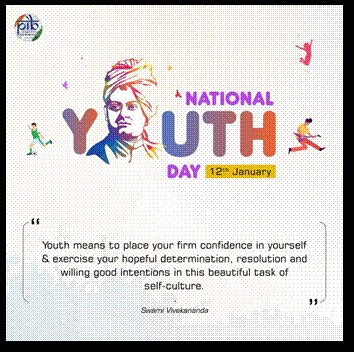
- 13 Jan 2025
In News:
On January 12, 2025, Prime Minister Shri Narendra Modi participated in the Viksit Bharat Young Leaders Dialogue 2025, an event aimed at empowering India's youth and charting a roadmap for the nation's development. This occasion also coincided with the celebration of National Youth Day, marking the 163rd birth anniversary of Swami Vivekananda, a renowned spiritual leader and social reformer who strongly believed in the transformative potential of India's youth.
Significance of National Youth Day
- Purpose:
- National Youth Day is celebrated to honor Swami Vivekananda's contributions, emphasizing the role of youth in nation-building.
- It promotes empowerment, leadership, and innovation among the youth.
- Year of First Celebration: 1985
- Key Theme (2025): "Arise, Awake, and Realize the Power You Hold"
Key Highlights from the Dialogue
- Goal of the Dialogue:
- Engaging youth in the decision-making process for a developed India by 2047.
- Empowering youth through platforms like quizzes, essay competitions, and thematic presentations.
- Ten Key Themes Discussed:
- Technology & Innovation
- Sustainability
- Women Empowerment
- Manufacturing & Agriculture
- Education and Skill Development
India’s Roadmap for 2047 (Viksit Bharat)
- Vision:
- Economic Power: India is moving toward becoming the third-largest economy.
- Strategic and Cultural Strength: India will have a robust economic, strategic, social, and cultural framework.
- Youth's Role: Innovation in technology, digital economy, space, and manufacturing will drive India’s growth.
- Key Projects and Targets:
- Target: Generating 500 GW of renewable energy by 2030.
- Net Zero Emissions for Railways: Set for 2030.
- Olympics: India aims to host the Olympics in the next decade.
- Space Power: Plans for a space station by 2035.
Viksit Bharat Young Leaders Challenge
- Objective:
- Engage youth in shaping ideas for a developed India.
- The Viksit Bharat Young Leaders Dialogue is part of the Viksit Bharat Challenge.
- Stages of the Challenge:
- Viksit Bharat Quiz: Participation by 30 lakh youth.
- Essay Writing: Over 2 lakh essays on key developmental themes.
- State Rounds: Rigorous in-person competition to identify the top young leaders.
- Participant Categories:
- 1,500 from Viksit Bharat Challenge Track.
- 1,000 from Traditional Track (cultural and science innovation).
- 500 Pathbreakers (leaders in diverse sectors).
Achievements Under Government Benefiting Youth
- Educational Reforms:
- Increase in IITs, IIITs, IIMs, and AIIMS.
- Growth in the number of higher education institutions and their global rankings.
- Economic Growth:
- India's economy has grown to nearly $4 trillion.
- Infrastructure Investments: More than ?11 lakh crore allocated for infrastructure development.
- Employment Opportunities for Youth:
- Mudra Loans: ?23 lakh crore distributed to youth entrepreneurs.
- Startup Ecosystem: India is among the top three in global startups.
- PM Gati Shakti Mission: Facilitating logistics and infrastructure development, creating employment opportunities.
Future Outlook
- Youth as the Future Leaders of India:
- India’s Youth Power: Vital to achieving a developed nation by 2047.
- The Viksit Bharat Young Leaders Dialogue is a platform for youth to voice their opinions and engage with policymakers.
- Role of Youth in India’s Transformation:
- Collective Responsibility: Every citizen's effort is essential for national goals.
- The vision of a Viksit Bharat hinges on the innovative contributions and ownership by young minds.
Indonesia Becomes 10th Member of BRICS
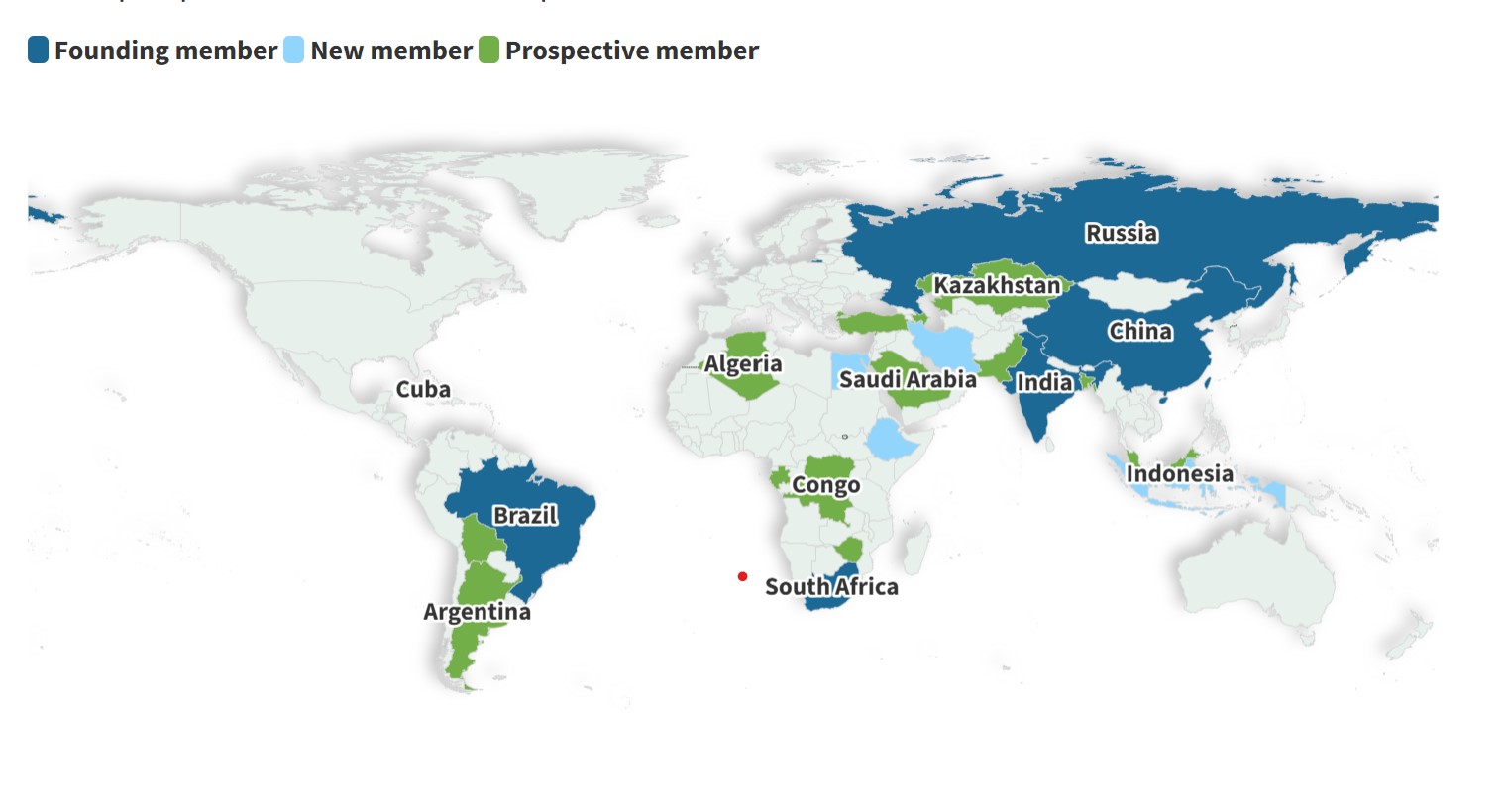
- 10 Jan 2025
In News:
In January 2025, Indonesia officially joined the BRICS group as its 10th member, signaling the expansion of this influential coalition of emerging economies. The addition of Indonesia, a Southeast Asian powerhouse, strengthens BRICS' global position and highlights the group's evolving dynamics.
BRICS Overview:
BRICS (Brazil, Russia, India, China, South Africa) is an informal intergovernmental group that fosters cooperation among major emerging economies. Initially coined as BRIC by economist Jim O'Neill in 2001, the group became BRICS in 2010 with the inclusion of South Africa. The bloc has grown steadily, with Indonesia now joining as its 10th member.
Recent Expansion:
- In 2023, invitations were extended to Saudi Arabia, Iran, UAE, Egypt, Ethiopia, and Argentina.
- By 2024, Iran, Egypt, Ethiopia, and UAE had joined as permanent members.
- Indonesia's membership was finalized in 2025, following its presidential elections and government formation.
Key Objectives of BRICS:
- Economic Growth: Promote trade, investment, and infrastructure development.
- Global Governance Reform: Advocate for equitable representation in global institutions like the UN and IMF.
- Cultural Exchange: Strengthen people-to-people connections and cultural ties.
- South-South Cooperation: Foster collaboration among developing nations.
BRICS Structure and Mechanisms:
- New Development Bank (NDB): Established in 2014, the NDB finances sustainable development projects in BRICS countries.
- Contingent Reserve Arrangement (CRA): A $100 billion safety net for financial crises.
- BRICS Academic Forum: Encourages academic collaboration across member states.
Global Influence and Economic Impact:
- Global Share: BRICS+ represents over 45% of the world’s population and 35% of global GDP (PPP-based).
- Strategic Position: The group acts as a counterbalance to the G7, challenging Western-dominated global financial systems.
- Financial Independence: BRICS aims to reduce dependence on the US dollar by facilitating local currency transactions and exploring a common currency.
- Technology Collaboration: Member countries, such as India and China, collaborate on digital payments and renewable energy technologies.
Indonesia’s Entry into BRICS:
Indonesia, the world’s fourth-most populous nation, strengthens BRICS’ representation in Southeast Asia. The country brings a robust economy and extensive trade networks, boosting the group's negotiating power. Indonesia’s membership was approved during the 2023 BRICS Summit and finalized in January 2025.
- Strategic Importance for Indonesia: The membership aligns with Indonesia's goals to enhance global cooperation, particularly with the Global South. It also reflects Indonesia's growing influence in international trade and geopolitics.
BRICS Challenges:
- Diverse Interests: Differences in economic priorities, such as India's ties with the US and Russia-China’s geopolitical rivalry, complicate consensus-building.
- Geopolitical Tensions: Disputes like the China-India border issue and Russia’s sanctions limit BRICS' ability to present a unified stance.
- Economic Sanctions and Internal Challenges: Countries like Russia face Western sanctions, while domestic issues in Brazil and South Africa divert attention from regional collaboration.
Significance of BRICS’ Expansion:
The expansion of BRICS marks a pivotal shift in global power dynamics, with a focus on South-South cooperation and equitable global governance. Indonesia’s membership further solidifies the group’s influence in Southeast Asia and adds to its efforts to challenge the dominance of Western-led financial institutions.
- Local Currency Use: The group promotes the use of local currencies for trade to reduce reliance on the US dollar.
- Global South Advocacy: BRICS champions the cause of developing nations, ensuring that emerging economies have a voice in global governance.
Recent and Upcoming BRICS Summits:
- 16th BRICS Summit (2024): Held in Kazan, Russia, with a focus on strengthening local currencies and promoting non-dollar transactions.
- 17th BRICS Summit (2025): Scheduled for July 2025 in Rio de Janeiro, Brazil, under the theme "Global South," with an emphasis on payment gateways to facilitate intra-BRICS trade.
National Mission on Edible Oils - Oil Palm (NMEO-OP)
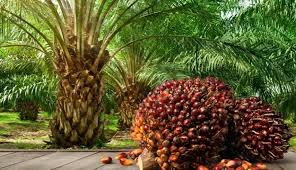
- 11 Jan 2025
In News:
- Union Minister Shri Shivraj Singh Chouhan urges states to accelerate efforts under the National Mission on Edible Oils - Oil Palm (NMEO-OP) to enhance domestic production of edible oils and reduce reliance on imports.
Key Facts Regarding the NMEO-OP Scheme:
About the Scheme:
- Objective: Enhance domestic production of crude palm oil (CPO) and reduce India's dependence on edible oil imports.
- Centrally Sponsored Scheme: Focuses on expanding oil palm cultivation in India.
Key Targets:
- Area Expansion: Aim to cover an additional 6.5 lakh hectares by 2025-26, reaching a total of 10 lakh hectares.
- Production Increase: CPO production is targeted to rise from 0.27 lakh tonnes (2019-20) to 11.20 lakh tonnes by 2025-26, and further to 28 lakh tonnes by 2029-30.
- Per-Capita Consumption: Maintain a consumption level of 19 kg/person/annum until 2025-26.
Focus Regions:
- Special Focus: North-Eastern States and Andaman & Nicobar Islands for oil palm cultivation and CPO production.
Key Features:
- Viability Price (VP) Mechanism: Aims to protect farmers from market volatility by providing price assurance. Payments are made through Direct Benefit Transfer (DBT).
- Increased Assistance:
- Assistance for planting material increased from Rs 12,000/ha to Rs 29,000/ha.
- Special assistance of Rs 250 per plant for rejuvenating old gardens.
- Regional Support:
- For North-East and Andaman, an additional 2% of the CPO price is borne by the government to ensure fair payments to farmers.
- Special provisions for half-moon terrace cultivation, bio-fencing, and land clearance for integrated farming.
Oil Palm Cultivation:
- Origin: Native to the tropical rainforests of West Africa, oil palm is a new crop in India with high oil-yielding potential.
- Oil Yield: Oil palm produces five times the yield of traditional oilseeds per hectare.
- Types of Oil Produced:
- Palm Oil: Extracted from the mesocarp (fruit's fleshy part), containing 45-55% oil.
- Palm Kernel Oil: Derived from the kernel, used in lauric oils.
- Major States for Cultivation: Andhra Pradesh, Telangana, Kerala (98% of total production).
- Other Key States: Karnataka, Tamil Nadu, Odisha, Gujarat, Mizoram, Arunachal Pradesh, Assam, Manipur, Nagaland.
India's Oil Palm Potential:
- Cultivated Area: India currently has 3.70 lakh hectares under oil palm cultivation.
- Total Potential Area: Around 28 lakh hectares.
- Imports: India is the world's largest palm oil importer, with imports of 9.2 million tonnes in 2023-24, accounting for 60% of total edible oil imports. The country primarily imports from Indonesia, Malaysia, and Thailand.
Emergency Declared in Trinidad and Tobago
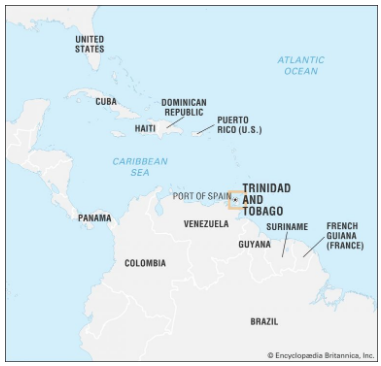
- 11 Jan 2025
In News:
- Trinidad and Tobago declared a state of emergency, in response to a surge in gang violence, which raised the annual death toll to the highest since 2013.
Trinidad and Tobago:
- Location: An island nation in the southern Caribbean, near Venezuela and Guyana.
- Capital: Port of Spain.
- Population: Approximately 1.5 million.
- Ethnic Composition: African (36.3%), Indian (35.4%), Mixed (22.8%), and others.
- Religions: Christianity (64%), Hinduism (18%), Islam (5%), and others.
- Independence: Gained from the UK on August 31, 1962, and became a republic in 1976.
- Member of: Caribbean Community (CARICOM), Commonwealth of Nations, and the United Nations.
- Major Rivers: Ortoire and Caroni.
- Geography:
- Total Land Area: 5,128 sq. km (Trinidad: 4,768 sq. km, Tobago: 300 sq. km).
- Climate: Tropical, with dry and rainy seasons.
- Highest Point: Mount Aripo.
- Natural Resource: Pitch Lake, the world’s largest asphalt reservoir.
- Mountain Range: Northern Range, part of the Andes extension.
Economic and Cultural Significance
- Exports: Major exporter of liquefied natural gas (LNG), methanol, ammonia, and petrochemicals.
- Culture: Known for Carnival, Calypso music, Soca, and the Steelpan (the only musical instrument invented in the 20th century).
- Infrastructure:
- Ports: Port of Spain, Point Lisas, Scarborough.
- Airports: Piarco International Airport (Trinidad) and A.N.R. Robinson International Airport (Tobago).
Engagement with India
- Trinidad and Tobago became the first Caribbean country to adopt India’s UPI platform.
- Both countries granted each other Most Favored Nation (MFN) status in 1997.
- Bilateral trade reached USD 368.96 million in FY 2023-24.
- The Indian diaspora constitutes about 42% of the population.
Past Emergency Declarations:
- 2014: State of emergency declared in response to gang violence.
- 2021: Emergency declared for Covid-19 restrictions.
- 2011: Limited state of emergency for drug-related crimes.
AI-Driven Inclusive Development and Economic Transformation
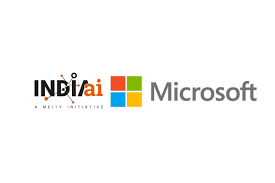
- 09 Jan 2025
In News:
IndiaAI, under the Digital India Corporation, has partnered with Microsoft to advance AI adoption in India for inclusive development and economic transformation. The collaboration focuses on skilling, innovation, AI safety, and responsible AI development, with a goal of fostering AI innovation across India, particularly in underserved rural and urban areas.
Key Highlights:
- Training 500,000 Individuals by 2026:
- Target Audience: Students, educators, developers, government officials, and women entrepreneurs.
- Goal: Empower these groups with foundational and advanced AI skills for economic opportunities and digital transformation.
- AI Catalysts (Centers of Excellence):
- Establishment of AI hubs in Tier 2 and Tier 3 cities to foster rural AI innovation.
- Objective to equip 100,000 AI innovators and developers through hackathons, community building, and creating an AI marketplace.
- AI Productivity Labs:
- Set up in 20 National Skill Training Institutes (NSTIs) across 10 states.
- Focus on training 20,000 educators and providing AI education to 100,000 students in 200 Industrial Training Institutes (ITIs).
- Support for Startups:
- Microsoft’s Founders Hub program will provide Azure credits, business resources, and mentorship to 1,000 AI startups in India, boosting innovation and growth in the Indian startup ecosystem.
- Development of Indic Language Models:
- Work on creating foundational AI models with support for Indic languages to address India’s linguistic diversity and cultural needs.
- AI Safety Institute:
- Focus on building frameworks, standards, and evaluation metrics for responsible AI development.
- Support for the creation of an AI Safety Institute in India to promote ethical and safe AI practices.
- Infrastructure & Research:
- Microsoft will also focus on enhancing cloud infrastructure and support for AI research through Microsoft Research India.
- AI-driven solutions will be developed for critical sectors like healthcare, education, and agriculture.
Investment and Strategic Goals:
- $3 Billion Investment:
- Microsoft has pledged $3 billion to expand AI and cloud infrastructure in India over the next 2 years. This investment will focus on:
- Building scalable infrastructure for AI applications.
- Enhancing cloud services and AI capabilities.
- Establishing new data centers across India, supporting the AI-first agenda.
- Microsoft has pledged $3 billion to expand AI and cloud infrastructure in India over the next 2 years. This investment will focus on:
- AI Skill Development:
- 10 million people will be trained over the next five years in AI skills, empowering the Indian workforce to adapt to AI technologies, driving job creation and economic growth.
- AI in India’s Economy:
- India aims to become a global leader in AI, with AI-powered solutions contributing to diverse sectors like finance, e-commerce, and manufacturing.
- Focus on economic growth through AI-powered industries and fostering entrepreneurship in underserved communities.
AI Technologies and Applications:
- Artificial Intelligence (AI) involves machines performing tasks that require human intelligence like decision-making, problem-solving, and learning from data.
- Machine Learning (ML): AI systems improve through data without being explicitly programmed.
- Natural Language Processing (NLP): AI systems understand and respond to human language.
- Computer Vision: AI systems analyze and interpret visual information.
- Robotics: AI powers automated tasks through robots in industries like manufacturing and healthcare.
- Cloud Infrastructure enables the scaling of AI systems:
- Cloud Computing provides on-demand access to computing power, essential for AI tasks requiring large amounts of data and processing power.
- Data Centers host AI models and data, and cloud services such as Microsoft Azure will support AI startups and businesses.
Expected Impact and Benefits:
- Inclusive AI Development: Focus on empowering women, students, and rural innovators to bridge the digital divide and promote economic empowerment.
- Startup Ecosystem: The collaboration will foster a robust AI startup ecosystem, promoting innovation and entrepreneurship through AI tools, Azure credits, and mentorship.
- Skill Development & Education: AI-driven skill training initiatives will prepare millions of individuals for the jobs of the future, particularly in the AI-driven economy, and support education reform.
- AI for Critical Sectors: Development of AI-enabled solutions to address challenges in sectors such as healthcare, education, and agriculture, driving social impact and economic growth.
India-Malaysia Cooperation in Critical Minerals and Rare Earth Elements
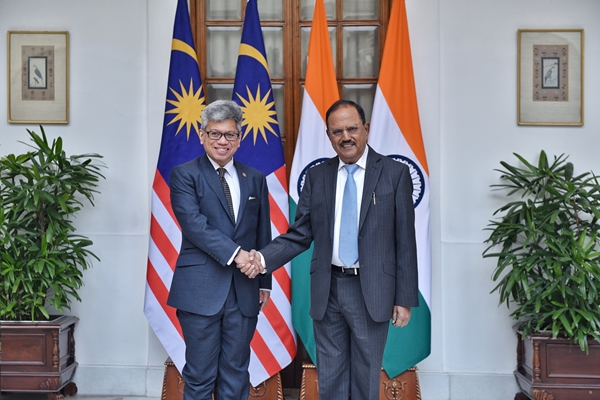
- 08 Jan 2025
In News:
- On January 7, 2025, during the inaugural India-Malaysia Security Dialogue in New Delhi, both countries agreed to enhance cooperation in critical minerals and rare earth elements (REEs).
- The meeting was co-chaired by India's National Security Adviser, Ajit Doval, and Malaysia’s Director General of the National Security Council, Raja Dato Nushirwan Bin Zainal Abidin.
- The agreement follows the upgrade of bilateral relations to a Comprehensive Strategic Partnership during Malaysian Prime Minister Anwar Ibrahim’s visit to India in August 2024.
- The dialogue also focused on other security aspects such as counter-terrorism, cyber security, and maritime security.
Importance of Critical Minerals and REEs:
-
- Critical Minerals: These are essential for a variety of industries like IT, energy, and defense. They are integral to manufacturing electric vehicle batteries, solar cells, and advanced electronics.
-
- Rare Earth Elements (REEs): Used in high-tech applications such as wind turbines, electric vehicle engines, and high-powered magnets. While their extraction is not rare, it is technically difficult due to their complex nature.
Strategic Relevance:
-
- Global Demand: The global demand for critical minerals is rising, and both countries see it as a strategic necessity to ensure a stable supply of these materials.
- Malaysia's Resources: Malaysia possesses significant deposits of non-rare radioactive earth ores, including essential REEs like Neodymium (Nd), Dysprosium (Dy), and Praseodymium (Pr). These elements are crucial in today’s technological innovations.
- India’s Dependence on Imports: India, which currently imports a substantial portion of its critical minerals, aims to diversify its supply chain by collaborating with Malaysia.
Sustainability and Ecological Accountability:
-
- Both countries recognize the environmental challenges of mining these critical resources. Malaysia aims to adopt responsible mining practices that minimize ecological harm.
- India seeks to ensure a supply chain that aligns with sustainable development goals, balancing economic needs with environmental responsibilities.
Enhancing Supply Chain Resilience:
-
- Diversification of Supply Chain: This partnership aims to reduce India’s dependency on a limited number of countries for critical minerals, enhancing resilience against global supply chain disruptions.
- Collaboration in Extraction and Processing: Both nations are exploring joint ventures in the exploration, extraction, and processing of critical minerals to boost their technological and economic standing globally.
Future Prospects:
-
- The institutionalization of this dialogue through annual meetings is expected to strengthen bilateral cooperation in the critical minerals sector.
- Increased cooperation is likely to enhance economic growth for both countries, aligning them strategically in the global minerals market as demand for these resources continues to soar.
Broader Security Cooperation:
-
- Beyond critical minerals, the India-Malaysia Security Dialogue explored enhanced collaboration in areas like counter-terrorism, cyber security, maritime security, and defense industries.
- This broadening of security cooperation complements the strategic minerals partnership, further solidifying the bilateral ties between the two nations.
Section 479 of the BNSS 2023
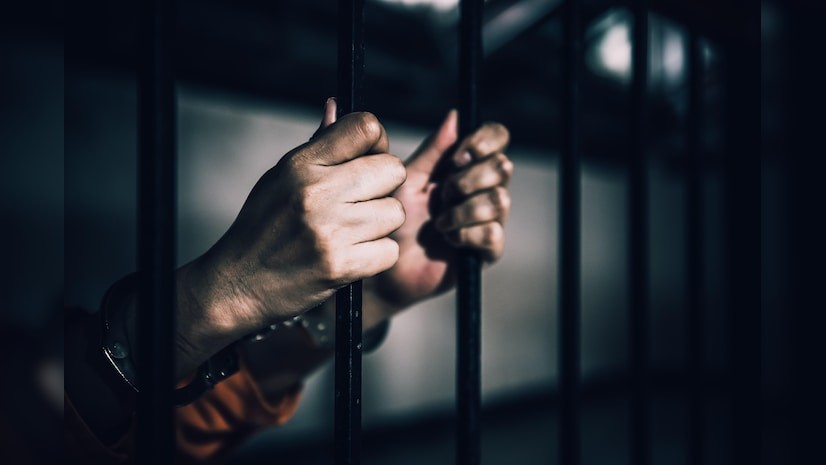
- 08 Jan 2025
In News:
Centre urges states, UTs to ensure undertrial prisoner relief in jails.
Key Highlights:
- Objective: The MHA has urged states and Union Territories (UTs) to implement provisions of Section 479 of the Bharatiya Nagarik Suraksha Sanhita (BNSS) 2023 to provide relief to undertrial prisoners (UTPs) in jails. This initiative aims to address issues such as long detention and overcrowding in prisons.
Key Provisions of Section 479 of BNSS, 2023
- Purpose: To offer relief to undertrial prisoners by mandating their release on bail or bond under specific conditions.
- Key Provisions:
- Subsection (1):
- Release on Bail: UTPs who have served half the maximum sentence for their offense (except offenses punishable by death or life imprisonment) are eligible for release on bail.
- Release on Bond for First-Time Offenders: First-time offenders, who have served one-third of the maximum sentence, are eligible for release on bond by the court.
- Subsection (3):
- Mandatory Application: It is the responsibility of the prison superintendent to apply to the concerned court for the release of eligible prisoners on bail or bond.
- Subsection (1):
- Superintendent’s Role:
- Prison superintendents are mandated to ensure timely applications for bail or bond are filed for eligible UTPs.
Implementation and Reporting
- MHA’s Advisory:
- On January 1, the MHA issued a letter to the Chief Secretaries, Director Generals, and Inspectors General of prisons in all states and UTs to ensure compliance with the provisions of Section 479 of BNSS.
- States and UTs were instructed to report the status of implementation in a prescribed format starting from January 1, 2025.
- Data to be Reported:
- First-Time UTPs: Number of first-time UTPs who have served one-third of their maximum sentence.
- Court Applications: Number of applications for bail filed by jail superintendents.
- Release on Bail: Number of UTPs released on bond or bail after meeting the eligibility criteria.
- Other UTPs: Number of UTPs who have completed half of their sentence, and the number of applications filed for their release.
- MHA’s Campaign:
- Launched on Constitution Day (November 26), this campaign encouraged states and UTs to identify eligible prisoners and file their bail applications, thus helping to reduce overcrowding in prisons and mitigate long-term detention.
Background and Context
- Why Section 479?
- Section 479 aims to reduce the prolonged detention of undertrials, some of whom may have already served significant portions of their maximum sentences. This will not only alleviate overcrowding in prisons but also expedite justice for prisoners who have spent extended periods in jail awaiting trial.
- Earlier MHA Initiatives:
- Prior to this directive, the MHA had issued an advisory on October 16, 2024, encouraging states and UTs to implement Section 479. A special push was also made during Constitution Day to move applications for the release of eligible prisoners.
- Expected Outcome:
- The measures are expected to significantly ease the challenges of overcrowded jails and provide timely relief to undertrials, especially first-time offenders. By enforcing these provisions, the government seeks to improve the judicial process for UTPs and contribute to a more effective and humane criminal justice system.
ISRO's Cowpea Seed Germination Experiment in Space
- 07 Jan 2025
In News:
ISRO successfully germinated cowpea seeds (Vigna unguiculata) in microgravity conditions during the PSLV-C60 POEM-4 mission. This experiment, conducted using the Compact Research Module for Orbital Plant Studies (CROPS), marks a significant advancement in space-based agricultural research.
Details of the Experiment:
- Mission Overview:
- The experiment took place aboard the PSLV-C60 POEM-4 mission, which included 24 sophisticated payloads.
- The CROPS payload, developed by the Vikram Sarabhai Space Centre (VSSC), is an automated system designed to study seed germination and plant survival in microgravity environments.
- Methodology:
- Eight cowpea seeds were placed in a controlled, closed-box system, equipped with temperature regulation and advanced monitoring tools.
- The system tracked plant development using high-definition cameras, sensors for oxygen, carbon dioxide, humidity, temperature, and soil moisture levels.
- Significance:
- The cowpea seeds successfully germinated within four days, with leaf development expected soon.
- This breakthrough in space agriculture is vital for the development of sustainable farming techniques in space, especially for long-term space missions and human settlements on other celestial bodies.
Broader Implications:
- Space Agriculture:
- The successful germination of cowpea seeds sets the foundation for growing crops in space, essential for self-sufficient habitats in space.
- This experiment is a significant step towards sustainable space agriculture, reducing the need for Earth-based resources in extraterrestrial environments.
- Future Missions:
- The experiment's success is pivotal for future missions aimed at Moon or Mars exploration, where space-grown crops will be necessary to support human life.
- ISRO’s achievement reinforces its growing expertise in space research and highlights the potential for international collaboration in space exploration and agricultural science.
About Cowpea Seeds:
- Cowpea (also known as lobia in Hindi) is a robust, nutrient-rich legume, ideal for agricultural research due to its adaptability and resilience in varied environments.
- The successful experiment with cowpea seeds holds promise for future extraterrestrial agriculture, ensuring food security for astronauts on long-duration missions.
National Sports Awards 2024
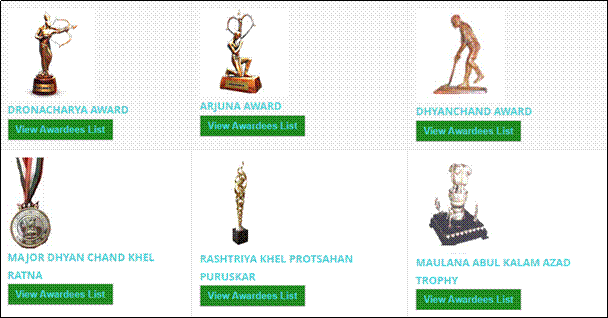
- 06 Jan 2025
In News:
The National Sports Awards 2024 were recently announced by the Ministry of Youth Affairs & Sports to celebrate excellence in Indian sports.
Key Highlights:
Major Dhyan Chand Khel Ratna Award
- This is India's highest sporting honor, renamed in 2021 after hockey legend Major Dhyan Chand.
- It’s awarded for exceptional performance in sports over a four-year period.
- 2024 Winners:
- Gukesh D (Chess)
- Harmanpreet Singh (Hockey)
- Praveen Kumar (Para-Athletics)
- Manu Bhaker (Shooting)
- The award includes a cash prize of Rs 25 lakh.
Arjuna Award
- Recognizes outstanding performance in sports over the previous four years and attributes like leadership, discipline, and sportsmanship.
- 2024 Winners: Various athletes across multiple disciplines received this honor.
Arjuna Award (Lifetime)
- Given to retired athletes who have not only excelled during their careers but also contributed to the promotion of sports post-retirement.
- 2024 Winners:
- Shri Sucha Singh (Athletics)
- Shri Murlikant Rajaram Petkar (Para-Swimming)
Dronacharya Award
- Given to coaches who have made a consistent and significant contribution by guiding sportspersons to excel at international events.
- The award includes a bronze statue of Dronacharya, a certificate, and a cash prize.
Maulana Abul Kalam Azad (MAKA) Trophy
- Awarded to the top-performing university in the Khelo India University Games.
- 2024 Winner: Chandigarh University.
Rashtriya Khel Protsahan Puruskar
- Recognizes individuals or organizations for their contribution to the promotion and development of sports.
- 2024 Winner: Physical Education Foundation of India.
These awards were selected by a committee led by Justice (Retd.) V. Ramasubramanian and include eminent sportspersons, journalists, and sports administrators. The winners will receive their awards from the President of India, marking a prestigious moment in Indian sports.
Translocation of Tigers from Madhya Pradesh
- 05 Jan 2025
In News:
Madhya Pradesh to translocate 15 Tigers to Rajasthan, Odisha and Chhattisgarh.
Key Highlights of the Translocation:
- Scale of Translocation: Largest relocation of big cats from a single state in India.
- Approval: NTCA has approved the translocation of 15 tigers from Madhya Pradesh to Rajasthan, Chhattisgarh, and Odisha.
- Source Reserves:
- Bandhavgarh, Panna, Kanha, and Pench Tiger Reserves in Madhya Pradesh.
- Distribution Plan:
- Rajasthan: 4 tigresses.
- Chhattisgarh: 2 male tigers and 6 tigresses.
- Odisha: 1 male tiger and 2 tigresses.
- Funding: States receiving tigers will bear all expenses related to translocation.
Objectives of the Translocation:
- Enhance Tiger Conservation: Reintroduce and bolster tiger populations in recipient states.
- Population Management: Relocate tigers to areas with suitable habitats to alleviate territorial disputes in overpopulated reserves.
- Genetic Diversity: Introduce new individuals to isolated tiger groups to prevent inbreeding and support long-term species survival.
About Kanha, Bandhavgarh, and Pench Tiger Reserves:
- Kanha Tiger Reserve:
- Location: Maikal range of the Satpura Mountains.
- Significance: Largest national park in Madhya Pradesh.
- Distinct Feature: First tiger reserve in India with an official mascot, ‘Bhoorsingh the Barasingha’.
- Flora and Fauna: Rich biodiversity with Royal Bengal Tigers, leopards, and the IUCN Vulnerable species, Barasingha.
- Bandhavgarh Tiger Reserve:
- Location: Between Vindhyan and Satpura ranges in Umaria district, Madhya Pradesh.
- Significance: Known for one of the highest densities of Royal Bengal Tigers in India.
- Historical Link: The ancient Bandhavgarh Fort, linked to the legend of Lord Rama and Lakshmana.
- Pench Tiger Reserve:
- Location: Spans Seoni and Chhindwara districts in Madhya Pradesh, extends into Maharashtra.
- Significance: Inspiration for Rudyard Kipling’s The Jungle Book.
- Flora and Fauna: Includes teak, saag, mahua forests; tigers, leopards, wild dogs, and gaur are key species.
Tiger Translocation Project Overview:
- First Project:
- Initiated in 2018, two tigers relocated from Kanha and Bandhavgarh to Satkosia Tiger Reserve in Odisha.
- Main Objectives:
- Reintroduce Tigers: In areas where they have been extirpated or extinct.
- Alleviate Territorial Disputes: Overpopulated reserves need additional tigers to reduce human-animal conflict.
Benefits of Translocation:
- Ecological Balance: Restores predator-prey dynamics in underpopulated reserves.
- Human-Animal Conflict Mitigation: Reduces conflict in overcrowded reserves.
- Rewilding Landscapes: Revives areas where tigers were locally extinct.
Concerns Associated with Translocation:
- Local Community Protests: Villagers fear tigers will pose a threat to their safety.
- Territorial Disputes: New tigers may face conflict with resident tigers.
- Poor Forest Management: Inadequate prey augmentation and habitat management may hinder success.
Madhya Pradesh’s Role in Tiger Conservation:
- Largest Tiger Population: Madhya Pradesh hosts the largest number of tigers in India, with 785 tigers as per NTCA’s 2022 report.
- Tiger Reserves: The state is home to nine tiger reserves, including the newly notified Madhav Tiger Reserve in Shivpuri.
- Translocation Strategy: Madhya Pradesh’s involvement helps reduce local tiger population pressure and contributes to broader conservation efforts across India.
Inter-State Tiger Translocation Goals:
- Reinforcement and Reintroduction: Introduce tigers into areas historically part of their range but from which they have been extirpated or extinct.
- Genetic Diversity: Introduce new tigers to isolated populations to maintain long-term population health.
Torrijos-Carter Treaties
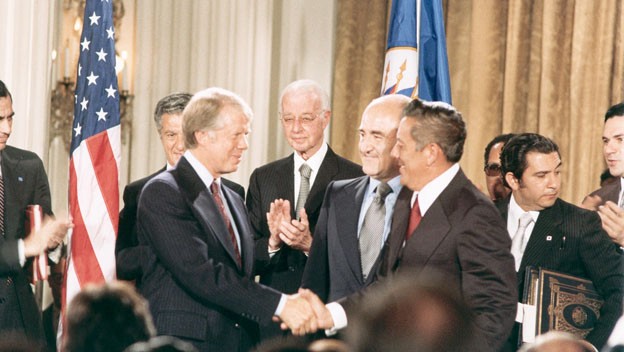
- 04 Jan 2025
In News:
Recently, Donald Trump threatened to take back the Panama Canal, calling the transfer treaty “foolish”.
Why Trump Called the Panama Canal Transfer 'Foolish'?
- Transit Fees:
- Trump expressed frustration over high transit fees imposed by the Panama Canal Authority (ACP) on U.S. vessels.
- In 2023, due to droughts affecting Lakes Gatun and Alhajuela (which are crucial for canal operations), the ACP reduced crossing slots by 36%, leading to an increase in transit fees for ships.
- Chinese Presence:
- Trump is also concerned about the growing Chinese influence in the Panama Canal region.
- In 2017, Panama became the first Latin American country to sign a Belt and Road Initiative (BRI) agreement with China, increasing Chinese investments.
- Hutchison Ports PPC, a subsidiary of a Hong Kong-based company, operates ports near the canal, raising concerns over China's influence on logistical operations and potential surveillance capabilities.
The Torrijos-Carter Treaties and Canal Transfer:
- Panama Canal Treaty (1977):
- The treaty transferred control of the Panama Canal from the U.S. to Panama by December 31, 1999.
- The U.S. would no longer control the canal, and Panama would assume full responsibility for its operation and defense.
- Permanent Neutrality Treaty (1977):
- Declared the canal to be neutral and open to vessels of all nations.
- U.S. Right to Defense: The U.S. retained the right to defend the neutrality of the canal and had priority passage in case of military emergencies.
Panama’s Response to Trump’s Criticisms:
- Defense of Transit Rates:
- President José Raúl Mulino rejected Trump’s claims, defending the transit fees as being in line with international standards and based on a transparent procedure.
- Sovereignty:
- Mulino emphasized Panama’s sovereignty over the canal, asserting that Panama’s control over the canal was non-negotiable. He categorically denied the presence of Chinese soldiers in the canal, stating that there would never be any.
China’s Response:
- China's Position:
- China's Foreign Ministry responded by emphasizing that the Panama Canal is a neutral passageway, a vital infrastructure for Panama and the global trade system.
- China affirmed its respect for Panama's sovereignty and denied any military presence in the canal area.
Implications and Future:
- Diplomatic Tensions:
- The issue of transit fees and foreign influence, particularly China's presence in the region, is likely to remain a point of diplomatic negotiation.
- Panama is expected to assert its sovereignty and seek international support to prevent any external interference in the canal’s operations.
- U.S. Influence:
- The U.S. might attempt to renegotiate terms related to the Panama Canal's operations, especially concerning transit fees and military rights, although Panama remains firm on maintaining control.
Torrijos-Carter Treaties:
- Significance:
- Panama Canal Treaty and Permanent Neutrality Treaty marked a major shift in U.S.-Latin America relations, ending U.S. control and restoring Panamanian sovereignty.
- The treaties also ensured the neutrality of the canal while maintaining U.S. military access in emergencies.
- Impact:
- The treaties were a symbol of Panama’s regained sovereignty and played a key role in stabilizing relations between the U.S. and Panama, as well as resolving tensions over control of the canal.
Open Data Kit (ODK) Toolkit
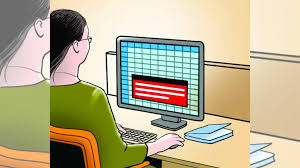
- 04 Jan 2025
In News:
- The Comptroller and Auditor General (CAG) of India has deployed the Open Data Kit (ODK) platform to enhance transparency in government spending and improve accountability in the delivery of government schemes.
- The toolkit is being used for designing, collecting, and managing data relevant to audits.
Key Highlights:
Objective:
- Enhance transparency in public spending.
- Improve accountability in government schemes and projects.
- Collect real-time beneficiary feedback to aid audit planning and identify areas needing additional review.
Key Features:
- End-to-end encryption: Ensures secure data management.
- Integration with CAG’s Operating System (OIOS): Facilitates seamless analysis and management of data.
- Multi-language support: Allows for surveys in multiple languages, making it more accessible to diverse beneficiaries.
- User-friendly interface: Simplifies the design and management of data collection processes for auditors.
Usage and Applications:
- Beneficiary surveys are a key tool for gathering data, helping CAG identify problem areas in government schemes.
- The ODK toolkit was recently deployed in audits of AIIMS institutions in Mangalagiri (Guntur) and Bibinagar (Hyderabad) to assess patient satisfaction and gather evidence for performance reviews.
Working Process:
- Surveys are designed on the ODK platform and deployed to beneficiaries.
- Data is collected in real-time and analyzed using the OIOS system to generate actionable insights for audits.
- Beneficiary feedback is used to evaluate scheme delivery and improve efficiency.
Significance:
- Facilitates data-driven decision-making in audits, ensuring that audits are more transparent and evidence-based.
- Improves the citizen-centric evaluation of government schemes by gathering direct feedback from beneficiaries.
- Enhances the performance review of key institutions like AIIMS, contributing to better service delivery.
- The introduction of the ODK toolkit is part of the CAG’s efforts to use digital tools for better governance and accountability in the public sector. This also aligns with the growing trend of using technology for governance and auditing.
CGWB Report on Groundwater Contamination
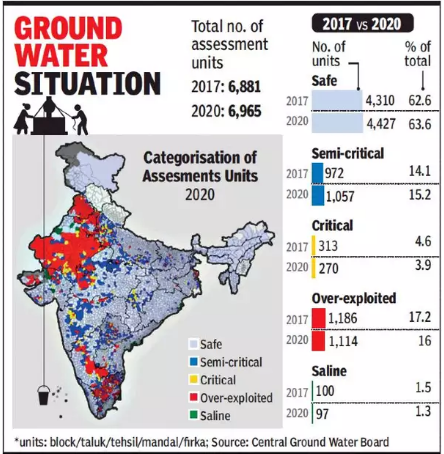
- 03 Jan 2025
In News:
The Central Ground Water Board (CGWB) report on groundwater quality reveals alarming levels of contamination in India's groundwater, with a focus on nitrate, fluoride, arsenic, and uranium. The report highlights the impact of agricultural practices, poor waste management, and urbanisation on water quality.
Key Highlights:
Nitrate Contamination:
- 440 districts in India report excessive nitrate levels in groundwater, with 20% of samples exceeding the permissible nitrate limit of 45 mg/L (WHO and BIS standards).
- High-risk regions: Rajasthan (49%), Karnataka (48%), and Tamil Nadu (37%) are the top states with high nitrate levels. Other affected states include Maharashtra, Telangana, Andhra Pradesh, and Madhya Pradesh.
- Causes: Nitrate contamination is mainly due to excessive use of nitrogen-based fertilizers, over-irrigation, and poor management of animal waste. Urbanisation and improper sewage systems exacerbate the problem.
Other Groundwater Contaminants:
- Fluoride contamination: A significant concern in Rajasthan, Haryana, Karnataka, Andhra Pradesh, and Telangana.
- Arsenic contamination: Elevated arsenic levels found in several states, especially in floodplains of the Ganga and Brahmaputra rivers (West Bengal, Jharkhand, Bihar, Uttar Pradesh, Assam, and Manipur).
- Uranium contamination: 42% of uranium-contaminated samples are from Rajasthan, and 30% from Punjab. Chronic exposure to uranium leads to kidney damage.
Groundwater Extraction and Availability:
- 60.4% of groundwater is being extracted across India.
- 73% of groundwater blocks are classified as in the ‘safe’ zone, an improvement from 67.4% in 2022.
Monsoon Impact:
- Nitrate contamination increases post-monsoon, with 32.66% of samples exceeding safe limits during the rainy season.
Health Implications:
- High nitrate levels, particularly dangerous for infants, can cause blue baby syndrome (methemoglobinemia).
- Long-term exposure to contaminants like fluoride and arsenic can lead to fluorosis and increase the risk of cancers and skin lesions.
Sources of Contamination:
- Agricultural practices: Excessive use of fertilizers, pesticides, and improper irrigation.
- Waste disposal: Leaking septic systems, sewage, and hazardous waste sites contribute to contamination.
- Urbanisation: Increased wastewater and sewage, along with poor waste management, worsen the issue.
Measures to Address Contamination:
- Jal Shakti Abhiyan (JSA) and Atal Bhujal Yojana (ABHY) aim to conserve and manage groundwater resources.
- National Aquifer Mapping and Management Program (NAQUIM) to assess and map aquifer systems.
- Pollution control programs: Under the Water (Prevention & Control) Act, 1974, and initiatives like sewage treatment plants and effluent treatment plants to manage wastewater.
- Public awareness: Campaigns like Swachh Bharat Mission and Catch the Rain educate communities on the importance of groundwater conservation.
Key Statistics:
- 56% of districts in India report groundwater nitrate levels exceeding the safe limit of 45 mg/L.
- Monsoon effects: Post-monsoon data shows a significant increase in contamination levels (32.66% vs. 30.77% pre-monsoon).
National e-Governance Awards (NAeG) Scheme 2025
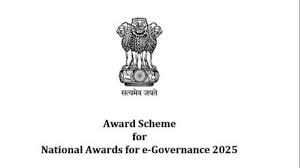
- 03 Jan 2025
In News:
- The Department of Administrative Reforms & Public Grievances (DARPG) has issued the guidelines for the 28th National e-Governance Awards (NAeG) 2025.
- Nominations for the awards can be submitted online via the official portal: www.nceg.gov.in.
Key Highlights:
- Award Categories: Nominations for the awards can be submitted under the following six categories:
- Government Process Re-engineering: Digital transformation through the use of technology to improve government processes.
- Innovation by Use of AI and New Age Technologies: Fostering citizen-centric services via artificial intelligence and other modern technologies.
- Best e-Gov Practices in Cyber Security: Recognizing excellence in e-Governance practices focused on cybersecurity.
- Grassroot Level Initiatives: Initiatives at the Districts, ULBs (Urban Local Bodies), or Gram Panchayats that deepen service delivery.
- Replication and Scaling Up of Successful Projects: Projects awarded in the past (such as NAeG or Prime Minister’s Awards) that have been successfully replicated or scaled.
- Digital Transformation using Data Analytics: Projects that leverage data analytics on digital platforms for enhancing governance.
- Eligibility: The awards are open to Central Ministries/Departments, State Governments, District Collectors, Research Institutions, and other relevant entities.
- Award Details:
- The NAeG 2025 will feature 16 awards:
- 10 Gold Awards.
- 6 Silver Awards.
- The NAeG 2025 will feature 16 awards:
- Incentives:
- Gold Award winners will receive a Trophy, Certificate, and an incentive of Rs 10 lakh.
- Silver Award winners will receive a Trophy, Certificate, and an incentive of Rs 5 lakh.
- The incentive will be used for further implementation of the awarded projects or bridging resource gaps in public welfare.
- Objective: The goal of the National Awards for e-Governance is to recognize and promote excellence in the implementation of e-Governance initiatives and digital transformation efforts across India.
Quad 20th Anniversary
- 03 Jan 2025
In News:
Quad Foreign Ministers reaffirmed their commitment to a free, open, and peaceful Indo-Pacific. Marked the 20th anniversary of Quad cooperation, originally formed to respond to the 2004 Indian Ocean earthquake and tsunami.
Key Highlights:
- What is the Quad?
- A strategic forum of the US, Japan, India, and Australia aimed at regional security and economic cooperation in the Indo-Pacific region.
- Founded on shared principles of democracy, human rights, rule of law, and countering China's influence.
- Origins:
- Quad traces its origins to the 2004 Tsunami relief efforts.
- Formed formally in 2007, but Australia withdrew in 2008 due to regional tensions. It rejoined in 2017 following strengthened US-Australia ties.
- Commitment to Regional Security:
- Focus on countering China’s assertive behavior in the Indo-Pacific.
- Ensuring maritime security, countering illegal fishing, promoting infrastructure, and advancing economic cooperation.
- Key Initiatives:
- IPMDA: Real-time monitoring of maritime activities.
- MAITRI: Capacity-building for maritime security.
- Quad Fellowship: Funds graduate-level STEM education in member countries.
- Open RAN: Promoting secure 5G infrastructure.
- Cancer Moonshot: Focus on cervical cancer prevention.
- Military and Naval Cooperation:
- Malabar Exercises: Joint naval drills between India, Japan, the US, and Australia.
- ASEAN and Regional Cooperation:
- Emphasis on ASEAN's central role in the Indo-Pacific region.
- Support for the Pacific Islands Forum and the Indian Ocean Rim Association (IORA).
- Future Developments:
- India to host the next Quad Summit in 2025.
- Continued focus on sustainable regional development, scientific collaboration, and disaster relief efforts.
- Significance of the Quad for India:
- Strategic Importance:
- Provides a platform to counter China's assertive policies, especially in the South China Sea and the "String of Pearls" strategy.
- Aligns with India’s Act East Policy, enhancing ties with East and Southeast Asia.
- Maritime Security: Ensures freedom of navigation and counters illegal activities like piracy and illegal fishing in India’s maritime domain.
- Economic Opportunities:
- Strengthens cooperation on infrastructure projects and trade initiatives, such as the Blue Dot Network.
- Post-COVID, Quad may aid India in attracting manufacturing units shifting from China.
- Scientific and People-to-People Collaboration: Supports STEM education and enhances soft power diplomacy through academic and cultural exchanges.
H-1B Visa
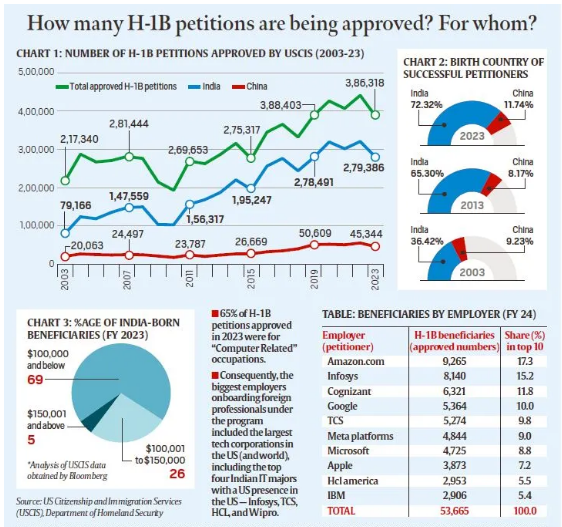
- 02 Jan 2025
In News:
In the weeks leading up to his return as US President, Donald Trump’s supporters are embroiled in a public dispute over skilled immigration and H-1B visas.
What is the H-1B Visa Program?
- Purpose and Overview:
- The H-1B visa is a non-immigrant visa allowing U.S. companies to employ foreign workers in specialized occupations like STEM (Science, Technology, Engineering, Mathematics) and IT, which require at least a bachelor’s degree.
- Introduced in 1990 to help U.S. employers fill positions when there’s a shortage of qualified domestic workers.
- It allows workers to stay in the U.S. for a maximum of six years, with the option to apply for permanent residence (Green Card) or leave for 12 months before reapplying.
- Annual Cap and Exemptions:
- 65,000 new visas are issued annually, with an additional 20,000 for those with a master’s degree or higher from a U.S. university.
- Certain petitions, such as for continuing employment or positions in higher education or nonprofit research, are exempt from the cap.
- Dominance of Indian Beneficiaries:
- Indians are the largest beneficiaries, accounting for over 70% of H-1B visa approvals annually since 2015, with China coming second at around 12-13%.
The Current Controversy
- Trigger for Debate:
- The controversy was sparked by Sriram Krishnan, a Chennai-born tech entrepreneur appointed as Donald Trump’s top AI adviser. His post on X (formerly Twitter) in November 2024, advocating for unlocking skilled immigration, led to backlash within Trump’s anti-immigration base.
- The Political Divide:
- Trump’s supporters, particularly from the MAGA (Make America Great Again) faction, voiced opposition to the H-1B visa program, arguing it undermines American workers and wages.
- This prompted pushback from pro-H-1B advocates like Elon Musk and Vivek Ramaswamy, who argue that the program is crucial for addressing the U.S.'s STEM talent shortages.
- Economic and Political Context:
- Immigration is a polarizing issue in the U.S., with a focus on low-skilled labor migration and its alleged effects on wages and job opportunities for American workers.
- Trump’s stance against low-skilled immigration echoes similar critiques about H-1B workers being employed at lower salaries in tech companies, which some claim depresses wages and reduces job opportunities for U.S. workers.
Criticisms of the H-1B Program
- Abuse of the System:
- Critics argue that companies exploit the H-1B program by hiring foreign workers, especially from India, at lower wages than American employees, particularly in tech industries.
- Elon Musk suggests that the program is “broken” and needs reform, proposing raising the minimum salary for H-1B workers to make it more expensive to hire overseas talent.
- Salary Disparities:
- Data from USCIS (U.S. Citizenship and Immigration Services) shows that 70% of H-1B petitions for Indian professionals in 2023 were for salaries below $100,000, while the median salary for U.S. IT professionals was $104,420.
- Impact on American Jobs:
- Critics argue that companies prefer to hire foreign workers at lower wages to save costs, despite the availability of qualified U.S. talent, thus taking away opportunities for American workers.
Support for the H-1B Program
- Filling the STEM Gap:
- Proponents, including Musk and Ramaswamy, argue that the H-1B visa is essential for filling the STEM skills gap in the U.S., given the global dominance of India and China in STEM fields.
- India and China lead the world in STEM graduates, with 2.55 million and 3.57 million, respectively, compared to the U.S. with 820,000.
- Proponents, including Musk and Ramaswamy, argue that the H-1B visa is essential for filling the STEM skills gap in the U.S., given the global dominance of India and China in STEM fields.
- Economic Benefits:
- The H-1B program helps U.S. companies access top global talent, boosting innovation and economic growth, especially in high-tech industries.
- Tech companies argue that without access to skilled foreign workers, they would struggle to fill critical positions in the technology sector.
Metabolic Dysfunction-Associated Steatotic Liver Disease (MASLD)
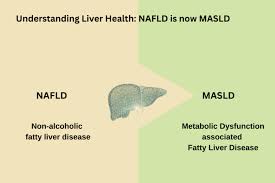
- 31 Dec 2024
In News:
Non-alcoholic fatty liver disease (NAFLD) has recently been renamed MASLD (Metabolic Dysfunction-Associated Steatotic Liver Disease), reflecting a shift in understanding of the disease's root causes and its broader implications.
Why the Name Change?
- The primary reason for renaming NAFLD to MASLD is to highlight the metabolic dysfunction as the primary cause of the disease.
- Previously, the term NAFLD focused on the absence of alcohol consumption, which inadvertently shifted attention away from the true contributors, like obesity, type 2 diabetes, and abnormal cholesterol levels.
- The term MASLD eliminates the stigma associated with "non-alcoholic," which may have misled people into thinking alcohol consumption was the only factor, even though metabolic issues are the central cause.
- The term MASLD shifts the focus towards metabolic dysfunction, making it easier for healthcare professionals to understand, diagnose, and treat the condition more effectively.
The Connection to Metabolic Dysfunction
- MASLD is strongly associated with metabolic issues such as abdominal obesity, insulin resistance, and high blood sugar. These metabolic problems are key contributors to liver fat accumulation.
- People with abdominal obesity are 2-3 times more likely to develop fatty liver disease. MASLD affects about 25% of the global population, and the rates increase significantly (up to 50-70%) in individuals with type 2 diabetes or obesity.
- By focusing on metabolic dysfunction, MASLD encourages addressing the root causes rather than just the symptoms, offering a more effective approach to treatment and prevention.
How is MASLD Diagnosed?
Advancements in non-invasive diagnostic methods have improved the ability to diagnose MASLD more easily and accurately, including:
- FibroScan: A non-invasive, painless test to measure liver fat and stiffness, replacing the need for liver biopsy.
- MRI and Ultrasound Techniques: Reliable methods for assessing liver fat and scarring.
- Blood Tests: Common tests like ALT, AST, and GGT assess liver function. Researchers are also exploring new markers like CK-18 fragments and the ELF score (Enhanced Liver Fibrosis) to improve diagnostic accuracy.
Implications for Patient Care
The renaming of NAFLD to MASLD has important implications for patient care:
- Targeted Treatments: By focusing on the metabolic roots, treatments such as weight loss, blood sugar management, and cholesterol control can be prioritized. These interventions help reduce the risk of long-term complications such as heart disease, liver failure, and cirrhosis.
- Earlier Diagnosis: MASLD encourages earlier recognition of the condition, which can lead to better management and improved long-term outcomes.
Prevention
Preventing MASLD involves avoiding foods that exacerbate liver fat buildup. Dr. Punit Singla, director at Marengo Asia Hospitals, emphasizes limiting or avoiding:
- Fast food, junk food, and processed foods
- Foods high in sugar, including red and processed meats
A healthier lifestyle with a balanced diet rich in whole grains, fruits, vegetables, and lean proteins can significantly help prevent or manage MASLD.
India-Australia Economic Cooperation and Trade Agreement (Ind-Aus ECTA)
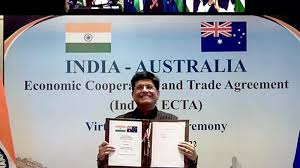
- 31 Dec 2024
In News:
The India-Australia Economic Cooperation and Trade Agreement (Ind-Aus ECTA) completes two years of remarkable success, driving mutual growth and showcasing the complementarity of both economies.
Key Achievements:
- Bilateral Merchandise Trade Surge:
- Trade increased from USD 12.2 billion (2020-21) to USD 26 billion (2022-23).
- Trade moderated slightly in 2023-24 to USD 24 billion, but exports from India to Australia grew by 14%.
- From April-November 2024, bilateral trade reached USD 16.3 billion.
- Preferential Import Utilization:
- Export utilization: 79%
- Import utilization: 84%
- Sectoral Growth:
- Textiles, chemicals, and agriculture sectors have seen significant growth.
- New export products: Gold studded with diamonds, turbojets.
- India’s imports: Metalliferous ores, cotton, wood products that fuel Indian industries.
- Geopolitical Strengthening:
- Enhanced relations in forums like Quad, Indo-Pacific Economic Framework (IPEF), Supply Chain Resilience Initiative (SCRI).
Key Features of the Agreement:
- Tariff Reductions:
- Australian goods: 85% tariff-free access to India (rising to 90% by 2026).
- Indian goods: 96% tariff-free access to Australia (rising to 100% by 2026).
- Access to Key Markets:
- India: Access to Australia's fast-growing market.
- Australia: Access to India's labor-intensive sectors like gems, jewelry, textiles, leather, furniture, food, agriculture.
- Services and IT:
- 135 sub-sectors covered in services.
- India gains market access in 103 sub-sectors with Most Favoured Nation (MFN) status in 31.
- Fast-tracked approval of medicines and elimination of double taxation for India's IT sector.
- Job Creation & Skill Exchange:
- Expected creation of 1 million jobs in India.
- Opportunities for Indian yoga teachers, chefs, and 100,000 students with post-study work visas.
Future Prospects:
- Comprehensive Economic Cooperation Agreement (CECA): Builds on ECTA to advance bilateral trade, with 10 formal rounds and ongoing inter-sessional discussions.
- Trade Target: Aim to reach AUD 100 billion in trade by 2030.
- Global Economic Impact: Strengthening the partnership will contribute to a more resilient and dynamic global economy, with deeper economic integration between India and Australia.
PM CARES Fund Contributions and Utilization (2022-23)
- 30 Dec 2024
In News:
The Prime Minister’s Citizen Assistance and Relief in Emergency Situations Fund (PM CARES Fund) received Rs 912 crore in contributions during the financial year 2022-23 as donations continued to pour in even after the Covid pandemic.
Key Highlights:
Contributions Received:
- Total contributions in 2022-23: Rs 912 crore.
- Voluntary contributions: Rs 909.64 crore.
- Foreign contributions: Rs 2.57 crore.
Interest Income:
- Total interest income for 2022-23: Rs 170.38 crore.
- From regular accounts: Rs 154 crore.
- From foreign contributions account: Rs 16.07 crore.
Refunds and Additional Inflows:
- Rs 225 crore in refunds, including:
- Rs 202 crore refund from procurement of 50,000 ventilators for government hospitals.
Disbursements:
- Total disbursed in 2022-23: Rs 439 crore:
- Rs 346 crore for PM CARES for Children.
- Rs 91.87 crore for procurement of 99,986 oxygen concentrators.
- Rs 1.51 crore for refunds.
- Rs 24,000 for legal charges, and Rs 278 for bank and SMS charges.
Cumulative Contributions (2019-23):
- Rs 13,605 crore received from 2019-20 to 2022-23.
- Voluntary contributions: Rs 13,067 crore.
- Foreign contributions: Rs 538 crore.
- Interest income over these years: Rs 565 crore.
About PM CARES Fund:
Formation and Purpose:
- Established: March 27, 2020, as a Public Charitable Trust under the Registration Act, 1908.
- Purpose: To address emergencies like COVID-19, natural disasters, and man-made calamities. It also supports healthcare infrastructure and essential facilities.
Governance and Structure:
- Chairperson: The Prime Minister (ex-officio).
- Trustees: Defence, Home, and Finance Ministers (ex-officio).
- Additional Trustees: Appointed by the PM, serving on a non-profit basis (e.g., Justice K T Thomas (retd.) and Kariya Munda).
Tax Exemptions:
- Donations are eligible for 100% tax exemption under Section 80G of the Income Tax Act, 1961.
- Donations qualify as Corporate Social Responsibility (CSR) expenditure under the Companies Act, 2013.
- The fund is exempt under the Foreign Contribution Regulation Act (FCRA), allowing it to receive foreign donations.
Reassessment of Conjugal Visits in Delhi Prisons
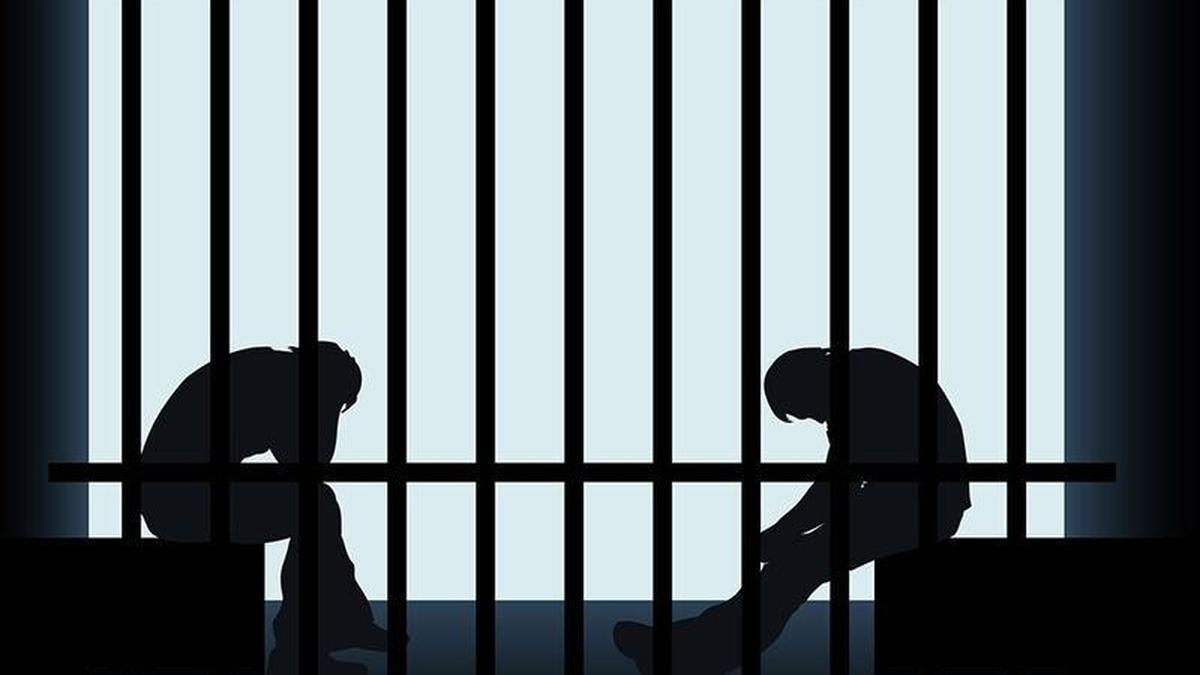
- 30 Dec 2024
In News:
- The Delhi government is reassessing the proposal to permit conjugal visits for prisoners, following the suspension of a similar initiative in Punjab.
- Delhi Chief Minister has sought further input from the Law Department and explored if similar schemes are implemented in other states.
Conjugal Visits - Definition & Context:
- Conjugal visits involve allowing prisoners to spend private time with their legal partners or spouses, including intimate relations, within prison premises.
- No national policy exists in India for conjugal rights of prisoners, leading to varied implementations across states.
Punjab’s Pilot Project - ‘Parivar Mulakat’:
- Ludhiana Central Jail introduced the 'Parivar Mulakat' programme in September 2022, allowing face-to-face meetings with family in designated rooms.
- The initiative was suspended shortly after its launch due to security concerns, particularly difficulty in conducting thorough body checks on visitors.
Challenges in Delhi:
- Overcrowded prisons in Delhi make it challenging to manage the logistical demands of conjugal visits, especially with up to 1,200 daily visitations.
- The Home Department has received proposals but no progress has been made over the past year.
Legal Precedents on Conjugal Rights:
- Punjab and Haryana High Court (2014) ruled that prisoners have a right to conjugal visits to facilitate procreation.
- Madras High Court (2018) allowed a life convict on parole for conjugal relations, and in 2023, a judge called for similar considerations for Tamil Nadu.
Human Rights Argument:
- Advocates argue that denying conjugal visits to prisoners violates basic human rights of both prisoners and their spouses, particularly those aged 21-50, who are often in sexually active years.
- Amit Sahni, a social activist, filed a PIL highlighting that most prisoners in Delhi are denied conjugal rights despite their eligibility.
Government’s Position:
- Delhi DG (Prisons) had argued that temporary leave such as parole and furlough serve the purpose of family ties, questioning the need for conjugal visits within prison.
Need for Legal Framework:
- Legal experts suggest the creation of a law and policy framework to regulate conjugal visits, ensuring clear guidelines for their implementation.
- S.D. Singh, a Supreme Court advocate, emphasized that conjugal visits should be legally recognized as a right, requiring formal legislation for consistent implementation.
Future Considerations:
- The Delhi government’s reassessment may lead to a policy that considers both human rights and security concerns in its decision on conjugal visits.
UN Approves New AU Force to Combat Al-Shabaab in Somalia
- 29 Dec 2024
In News:
- On January 19, 2024, the UN Security Council approved a new African Union (AU) force in Somalia to counter the Al-Shabaab terrorist group.
- The resolution was supported by 14 of 15 members, with the US abstaining due to concerns about funding.
- The new force will replace the African Union Transition Mission in Somalia (ATMIS) after its mandate ends on December 31, 2024.
New Mission - AUSSOM:
- The new mission is named African Union Support and Stabilization Mission in Somalia (AUSSOM).
- AUSSOM will continue supporting Somali forces in stabilizing the nation and combating terrorism.
- The mission's objective is to enhance security and stability in Somalia, addressing the challenges posed by Al-Shabaab and ISIL.
Mandate and Operations:
- AUSSOM allows for the deployment of up to 12,626 personnel, including 1,040 police officers, until June 2025.
- The force will focus on counterterrorism, maintaining security, and assisting the Somali government in stabilizing the country.
Financing:
- A hybrid funding approach will be used:
- 75% of the mission’s costs will be covered by the UN, and 25% will come from African Union and partner countries.
- The US raised concerns about the UN's disproportionate funding of the mission, which led to its abstention from voting.
Contributing Countries:
- Egypt has announced its participation in the new force.
- Burundi and Ethiopia will not be contributing troops to AUSSOM.
- Ethiopia has its own ongoing disputes with Somalia, particularly regarding its maritime deal with the breakaway Somaliland region.
Background on Somalia's Challenges:
- Somalia has faced decades of civil war, an insurgency by Al-Shabaab, and recurring climate disasters.
- The country is one of the poorest in the world, and its internal conflicts are exacerbated by clannism, which has fragmented its political and social structure.
Historical Context of Peace Missions in Somalia:
- Previous UN peacekeeping missions in Somalia (1992-1995) faced significant failures, notably the Battle of Mogadishu and the failure to prevent the 1993 massacre.
- The rise of Al-Shabaab in the mid-2000s has further escalated the conflict, and the mission of AUSSOM aims to address these continuing threats.
The Role of Clannism:
- Clannism has hindered the establishment of a unified government in Somalia, with clan rivalries leading to a lack of national cohesion.
- Clannism refers to the prevalence of clan-centric politics, where allegiance to clan and sub-clan interests often takes precedence over national cohesion. In Somalia, the major clans are Darod, Hawiye, Dir, and Rahanweyn.
Importance of AUSSOM:
- AUSSOM represents a strategic shift in the international approach to stabilizing Somalia, relying more on African-led initiatives for peace and security in the region.
Global Peacekeeping Operations:
- The UN peacekeeping mission has been active globally, with over 1 million personnel deployed across 70+ operations.
- Success stories like Sierra Leone (1999-2005) and Liberia (2003-2018) demonstrate the potential impact of well-executed peace missions, but past failures like in Somalia (1992-1995) and Rwanda (1994) underline the challenges faced.
India’s Contribution:
- India has contributed significantly to UN peacekeeping missions, deploying over 253,000 personnel in 49 operations since 1948.
- India’s contributions to missions in Somalia, Rwanda, Sierra Leone, and Sudan reflect its active role in global peacekeeping efforts.
ASI Decodes Sanskrit Inscription Found in Pakistan-Occupied Kashmir (PoK)
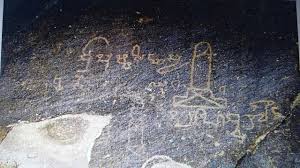
- 29 Dec 2024
In News:
An ancient Sanskrit inscription found in Gilgit (PoK) was decoded by the Archaeological Survey of India (ASI).
About the Inscription:
- Location:
- Gilgit (PoK): Written in Brahmi script, dating back to 4th century CE.
- Peshawar (Pakistan): Written in Sharada script, dating to 10th century CE.
- Details of Gilgit Inscription:
- Mentions Pushpasingha, who installed a Mahesvaralinga for the merit of his guru.
- Written in Brahmi script, which was prevalent during the 4th century CE.
- Religious Context: Indicates significant religious connection, particularly with Shaivism.
- Details of Peshawar Inscription:
- Fragmentary: Engraved on a slab.
- Written in Sharada characters (10th century CE).
- Mentions Buddhist Dharini (chants), particularly referring to Da (Dha) rini in line six.
- The inscription is partially damaged, and further details are unclear.
- Earlier Discoveries:
- This is not the first Sanskrit inscription decoded from Pakistan. In the past, Sanskrit inscriptions have been found in various parts of Pakistan.
- Swat Valley: Known for numerous Buddhist rock inscriptions in Sanskrit using Nagari script, which were part of the Gupta Empire (circa 240–550 CE).
- Religious and Cultural Implications:
- The Gilgit inscription provides evidence of Shaivism as a prominent religious practice in the region during the 4th century CE.
- The Peshawar inscription suggests Buddhist influences, particularly related to Buddhist chants and rituals.
- Swat Valley's Role: The inscriptions found here highlight its importance as a center of Buddhist learning and cultural exchange.
China approves construction of World’s Largest Hydropower Dam on the Brahmaputra River
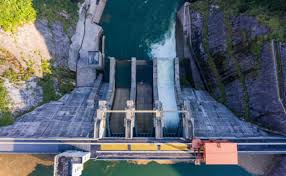
- 28 Dec 2024
In News:
China approved the construction of the world's largest dam, stated to be the planet's biggest infra project, on the Brahmaputra river in Tibet close to the Indian border, raising concerns in India and Bangladesh.
Key highlights:
Overview of the Project:
- Location: Lower reaches of the Yarlung Zangbo River (Tibetan name for Brahmaputra), where the river makes a U-turn in the Himalayan region before flowing into Arunachal Pradesh, India.
- Purpose:
- To support China’s carbon neutrality goals.
- To boost industrial growth and create jobs in Tibet.
- Expected to generate 300 billion kWh of electricity annually, over three times the capacity of the Three Gorges Dam in central China.
Significance:
- Scale: The dam is poised to be the world’s largest hydropower project, surpassing the Three Gorges Dam, and becoming the biggest infrastructure project globally, with an estimated cost of USD 137 billion.
- Engineering Challenges: The site is located in a seismic zone on the Tibetan plateau, prone to earthquakes, making construction and operational stability a major engineering challenge.
Concerns:
- Environmental Impact:
- Potential disruption to the local ecosystem and biodiversity.
- Risk of altering the river’s flow and course, which could impact agriculture and water resources downstream, particularly in India and Bangladesh.
- Geopolitical Risks:
- Water control: India and Bangladesh are concerned about China’s ability to control the water flow, with fears of China manipulating the flow to release excess water during conflicts, causing potential flooding in border areas.
- The project could also disrupt the hydrological cycle, affecting the region’s water availability, especially in Assam and Bangladesh.
Background:
- The Brahmaputra River is a trans-boundary river, flowing through China, India, and Bangladesh. Known by different names in these countries, it plays a vital role in the livelihoods of millions of people.
- China has already initiated hydropower generation on the upper reaches of the Yarlung Zangbo, with plans for additional projects upstream.
India-China Cooperation:
- China and India have an Expert Level Mechanism (ELM) in place since 2006 to manage trans-boundary river issues, under which China shares hydrological data with India, especially during the flood season.
- India is also constructing its own hydropower projects on the Brahmaputra in Arunachal Pradesh.
Potential Outcomes:
- Energy Generation: The dam could significantly contribute to China’s energy needs, providing a substantial amount of renewable energy.
- Regional Tensions: The dam’s construction may escalate tensions between China, India, and Bangladesh due to the control over water resources and environmental impact concerns.
Household Consumption Expenditure Survey: 2023-24
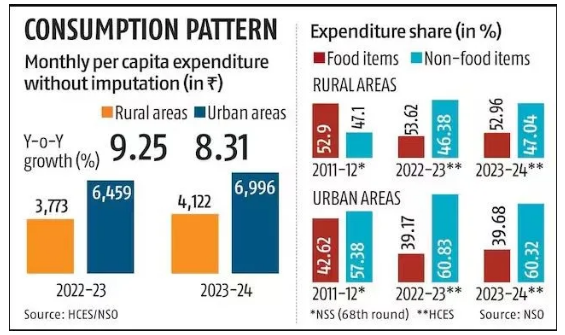
- 27 Dec 2024
In News:
The latest Household Consumption Expenditure Survey (HCES) for 2023-24 reveals notable trends in consumption patterns in rural and urban India, reflecting economic shifts post-pandemic.
Key Highlights:
- Food Spending Increase: The share of food expenditure in household budgets has increased both in rural and urban areas, likely due to rising food prices.
- Rural households allocated 47.04% of their expenditure to food in 2023-24, up from 46.38% in 2022-23.
- Urban households spent 39.68% of their budgets on food, slightly up from 39.17% last year.
- Narrowing Urban-Rural Gap: The gap in Monthly Per Capita Consumption Expenditure (MPCE) between rural and urban households has steadily reduced over the past decade.
- In 2023-24, rural consumption spending was 69.7% of urban consumption, an improvement from 71.2% in 2022-23 and 83.9% in 2011-12.
- Increased Rural Spending: Rural India has seen significant increases in spending. The average monthly spending per person in rural areas rose by 9.3% to Rs 4,122 in 2023-24, surpassing the 8.3% rise to Rs 6,996 in urban areas.
- This suggests a growing momentum in rural consumption, which has outpaced urban consumption growth in the last year.
- Spending Trends Across Income Groups: While the top 5% of both rural and urban populations saw a decrease in their consumption spending, every other income group, including the bottom 5%, registered an increase in spending.
- The bottom 20% in both rural and urban areas saw the highest growth in expenditure, signaling rising economic activity among lower-income groups.
- Non-Food Expenditure Dominates: Non-food items make up a larger share of household spending, particularly in urban areas, where they account for 60.32% of total expenditure compared to 52.96% in rural areas.
- In rural India, major non-food expenses include medical, conveyance, and clothing, while urban households allocate more to entertainment, education, and miscellaneous goods.
- Regional Consumption Patterns: Consumption expenditure varied significantly across states, with western and northern states like Maharashtra, Punjab, and Tamil Nadu spending more than the national average.
- In contrast, eastern and central states, including West Bengal, Bihar, and Odisha, spent less. Sikkim reported the highest per capita expenditure in both rural (Rs 9,377) and urban (Rs 13,927) areas, while Chhattisgarh recorded the lowest.
- Declining Consumption Inequality: The Gini coefficient, which measures consumption inequality, has declined in both rural and urban areas.
- This reflects reduced disparity in spending, indicating a trend toward more equitable economic growth across regions.
- Food Expenditure Trends: Food categories like beverages, processed foods, and cereals continued to see rising shares in total expenditure. The rise in spending on food items was particularly notable in rural areas for eggs, fish, and meat.
Operation Green Scheme
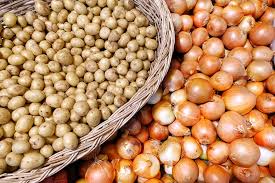
- 27 Dec 2024
In News:
The government’s flagship Operation Greens scheme, designed to stabilise crop prices and benefit farmers, has spent just 34 per cent of its allocated budget for 2024-25, according to a parliamentary report, even as onion farmers in Maharashtra reel from massive losses and potato shortages grip eastern states.
Key Highlights:
Overview:
- Launched: November 2018 under the Pradhan Mantri Kisan SAMPADA Yojana.
- Objective: Stabilize prices and improve farmers' income by enhancing the production and marketing of perishable crops, initially focusing on Tomato, Onion, and Potato (TOP).
- Expanded Scope (2021): Includes 22 perishable crops like mango, banana, ginger, apple, and shrimp.
- Implemented by: Ministry of Food Processing Industries (MoFPI).
- Funding: Managed by the National Agricultural Cooperative Marketing Federation of India (NAFED).
Key Aims:
- Reduce price volatility in agricultural markets.
- Minimize post-harvest losses.
- Strengthen farm-to-market linkages.
- Enhance farmers’ earnings by stabilizing market prices.
- Promote value addition and food processing.
Scheme Components:
- Short-term Interventions:
- Subsidies on transportation (50%) and storage (50%) to protect farmers from distress sales.
- Price stabilization during periods of surplus or shortage.
- Long-term Interventions:
- Development of farm-gate infrastructure like cold storage and processing facilities.
- Strengthening production clusters and Farmer Producer Organizations (FPOs).
- Building efficient agri-logistics systems.
- Promoting food processing and value addition capacities.
Key Features:
- 50% subsidy on transportation and storage costs for eligible crops.
- Projects eligible for 50% subsidy (up to ?50 crore per project), and for FPOs, a 70% subsidy.
- Demand-driven funding based on applications, with no fixed crop or state-wise allocation.
Key Findings from Parliamentary Standing Committee (PSC) Report (2024):
- Underutilisation of Budget: Only 34% (?59.44 crore) of the allocated ?173.40 crore for 2024-25 spent by October 2024, leaving 65.73% unspent.
- Slow Implementation: Out of 10 targeted projects, only 3 were completed by October 2024.
- Limited Impact on Price Stabilization:
- Onion prices fell by nearly 50% in Maharashtra, despite the scheme's intent to stabilize prices.
- Potato shortages in states like Odisha and Jharkhand due to weather-induced production dips in West Bengal.
- Inconsistent Policies: Export bans and fluctuating export duties caused frustration among onion farmers, undermining the scheme’s effectiveness in ensuring fair prices.
Impact on Farmers:
- Price Stabilization: Despite the scheme’s aims, price fluctuations continue to affect farmers, especially in Maharashtra with the onion price crash.
- Post-Harvest Losses: The scheme aims to reduce wastage by building infrastructure like cold storage, but challenges remain in implementation.
- Market Linkages: Attempts to connect farmers and FPOs with retail markets have not yet yielded significant results.
Operational Challenges:
- The scheme faces challenges in fulfilling its dual mandate of ensuring fair prices for farmers while keeping consumer prices affordable.
- The slow utilization of funds and incomplete infrastructure projects raise concerns about the effectiveness of the program.
- Inconsistent policy decisions, like the export ban and imposition of export duties, have contributed to farmer discontent.
Private Aviation and Emissions

- 26 Dec 2024
In News:
Private aviation is releasing more than its ‘fair share’ of emissions.
Key Highlights:
- Aviation Sector's Global Emissions:
- The aviation sector contributed 2% of global CO2 emissions in 2022, around 800 Mt CO2 (International Energy Agency).
- If considered as a nation, aviation would rank among the top 10 emitters worldwide.
- Emissions from aviation have grown faster than other sectors like rail, road, or shipping in recent decades.
- Private Aviation and Its Impact:
- Private jets emit 5 to 14 times more CO2 per passenger than commercial flights and 50 times more than trains.
- Emissions from private aviation increased by 46% between 2019 and 2023.
- Each private flight contributes 3.6 tonnes of CO2 on average, intensifying global warming.
- Private aviation is responsible for significant nitrogen oxide (NOx) emissions and the creation of vapor trails, which further amplify environmental damage.
Trends in Private Aviation Growth:
- Global Trends:
- The number of private jets increased from 25,993 in December 2023 to 26,454 in February 2024.
- In the U.S., 69% of private aviation activity is concentrated.
- 8,500 more jets are expected to be delivered in the next 10 years globally.
- Private Aviation in India:
- 112 private planes were registered in India as of March 2024, placing it among the top 20 countries for private aircraft ownership.
- India's private aviation sector is expanding, driven by the growing billionaire and millionaire population.
- Private aircraft ownership in India stands at 1 per 1 lakh population, which is low compared to countries like Malta (46.51 per lakh) and the U.S. (5.45 per lakh).
Emission Reduction Efforts and Solutions:
- Sustainable Aviation Fuels (SAFs):
- SAFs are bio-based or waste-derived fuels that can reduce carbon emissions by up to 80% compared to conventional jet fuels.
- Airlines like SpiceJet (2018) and AirAsia (2023) have tested SAFs, but large-scale adoption is hindered by high costs and limited production.
- India aims to leverage its ethanol production chain, with potential to meet 15-20% of aviation fuel demand by 2050 if only surplus sugar is used.
- Hydrogen and Electric Aviation:
- Hydrogen offers a higher energy density than kerosene and emits only water vapor, making it a clean fuel alternative. However, hydrogen faces challenges with storage, infrastructure, and aircraft redesign.
- Battery-electric propulsion offers zero emissions but is currently limited by battery weight, energy density, and charging infrastructure.
India’s Policy and Initiatives:
- Government Initiatives:
- UDAN Scheme (Ude Desh ka Aam Nagrik) aims to enhance rural connectivity.
- NABH (Nextgen Airports for Bharat Nirman) seeks to increase airport capacity by five times.
- Sustainability Efforts:
- Indian airlines have tested SAFs, such as a 25% jatropha oil blend by SpiceJet in 2018.
- Ethanol for aviation fuel: India plans to use surplus sugar for ethanol, potentially fulfilling 15-20% of aviation fuel needs by 2050.
- Challenges to Decarbonisation:
- SAFs are costly and limited in availability.
- Hydrogen requires extensive infrastructure and aircraft redesign.
- Battery-electric solutions are currently unsuitable for long-haul flights due to energy limitations.
National Human Rights Commission (NHRC)
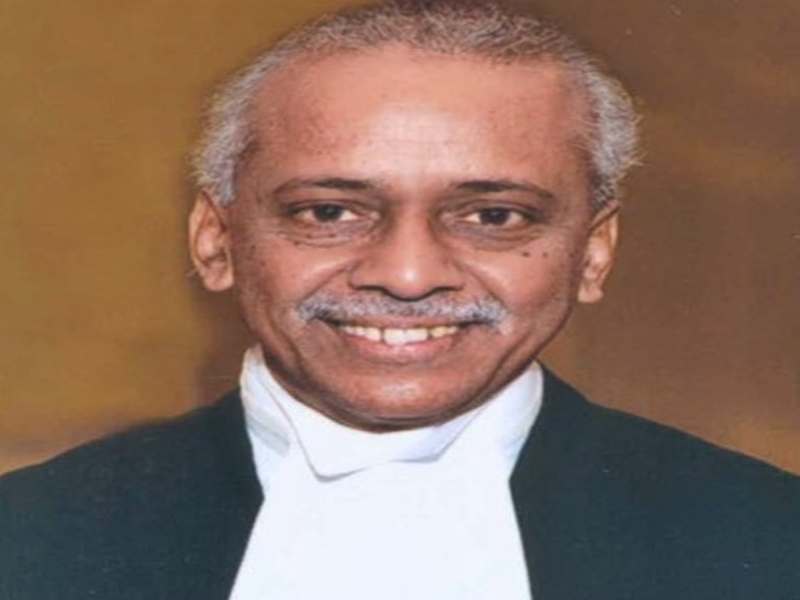
- 24 Dec 2024
In News
Justice V. Ramasubramanian, a retired Supreme Court judge, has been appointed as the new chairperson of the National Human Rights Commission (NHRC). This decision was made by President Droupadi Murmu, and it comes following the completion of Justice Arun Kumar Mishra's tenure as NHRC chairperson in June 2023. After Justice Mishra's retirement, Vijaya Bharathi Sayani served as the acting chairperson. Alongside Justice Ramasubramanian, Priyank Kanoongo and Dr. Justice Bidyut Ranjan Sarangi (Retd.) have also been appointed as members of the commission.
Justice Ramasubramanian had been appointed a judge of the Supreme Court in September 2019 and retired in June 2023. His appointment to the NHRC is seen as a significant development for human rights advocacy and protection in India.
National Human Rights Commission (NHRC)
Establishment and Legal Framework
- Formation Date: The NHRC was established on October 12, 1993, under the Protection of Human Rights Act (PHRA), 1993.
- Paris Principles: It was created in alignment with the Paris Principles (1991), which were endorsed by the UN General Assembly in 1993, aimed at setting standards for national human rights institutions.
- Statutory Body: NHRC is a statutory body, meaning it is established by law, with a primary function to safeguard human rights in India.
Objectives
The NHRC's primary objective is to promote and protect human rights as defined in Section 2(1)(d) of the PHRA, which include fundamental rights such as:
- Right to Life
- Right to Liberty
- Right to Equality
- Right to Dignity
These rights are guaranteed by the Indian Constitution and are essential to the protection of individuals' freedoms and welfare.
Composition of NHRC
- Chairperson: A former Chief Justice of India or a former Supreme Court judge serves as the chairperson.
- Members:
- One former or sitting Supreme Court judge.
- One former or sitting Chief Justice of a High Court.
- Three members, with at least one woman, who have experience in human rights matters.
- Ex-Officio Members: The chairpersons of various National Commissions (e.g., SC/ST, Women, Minorities) and the Chief Commissioner for Persons with Disabilities are also part of the NHRC.
Functions and Powers
The NHRC has several crucial functions and powers to ensure the protection and promotion of human rights:
- Inquiry into Human Rights Violations: The commission can inquire into violations of human rights by public servants or negligence in protecting rights.
- Recommendations: It can make recommendations on how to protect, promote, and effectively implement human rights within India.
- Review of Laws: NHRC assesses various laws, treaties, and international instruments related to human rights.
- Research and Awareness: It promotes research, publications, and awareness about human rights issues, including educating the public about their rights and safeguards.
- Inspection of Institutions: NHRC has the authority to visit and inspect institutions such as jails, detention centers, and other places of confinement to ensure the humane treatment of individuals.
The ‘No-Detention’ Policy and Its Evolution
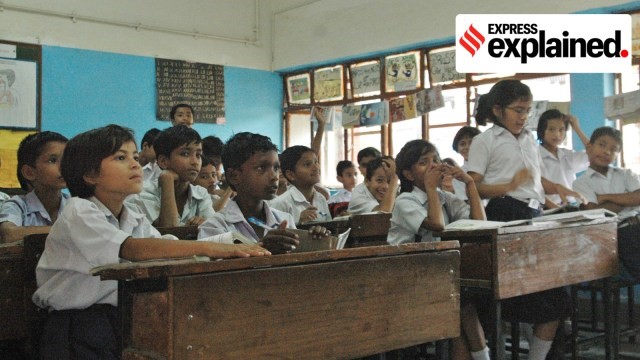
- 24 Dec 2024
In News:
The ‘no-detention’ policy was a significant part of India’s education reforms under the Right to Education (RTE) Act of 2009. This policy aimed to prevent the detention or expulsion of students until the completion of elementary education (Classes 1-8), with a focus on reducing dropout rates and ensuring every child receives at least basic education. However, the policy has been contentious, with arguments both for and against its implementation.
What was the ‘No-Detention’ Policy and Why Was It Introduced?
The RTE Act (2009) made education free and compulsory for children aged 6 to 14, under Article 21A of the Constitution. Section 16 of the Act specifically prohibited the detention or expulsion of students in elementary education (Classes 1-8). The rationale was to prevent the demotivation and fear of failure that might cause children to drop out of school, especially those from marginalized backgrounds. By promoting automatic progression through grades, the policy aimed to ensure that no child was left behind due to academic struggles.
Key to this system was Continuous and Comprehensive Evaluation (CCE), which assessed students on a holistic basis, beyond just formal exams, encouraging learning through regular feedback and assessments.
Amendments to the RTE Act (2017 and 2019)
In 2017, a Bill was introduced to amend the RTE Act, following concerns about the effectiveness of the ‘no-detention’ policy. The amended policy allowed for regular exams in Classes 5 and 8. If students failed, they would be given a re-examination within two months. If they still did not meet promotion criteria, detention could be enforced. This amendment empowered the Centre and states to decide whether to detain students in these grades.
The amendment came after criticism of the original policy for promoting students without sufficient learning progress. States like Madhya Pradesh and Punjab argued that no-detention was leading to poor academic performance, and called for a return to the traditional system of promoting students based on examination results.
Arguments for and Against the No-Detention Policy
Arguments for No-Detention:
- Reduced Dropout Rates: The policy helped ensure students, especially from disadvantaged backgrounds, continued in school without the fear of failure, leading to a drop in dropout rates.
- Holistic Development: It encouraged a child-centric learning approach where students were assessed on their overall development rather than just exam performance.
- Social Inclusivity: By promoting students regardless of performance, it was hoped that education would be more inclusive, preventing marginalization of students from lower socio-economic backgrounds.
Arguments Against No-Detention:
- Decline in Learning Outcomes: The policy led to a lack of motivation for students to perform academically. Without the accountability of exams, many students became less serious about their studies.
- Low Teacher Accountability: With automatic promotion, teachers had less incentive to ensure quality learning, leading to an overall dip in teaching standards.
- Impact on Educational Standards: Data indicated a decline in learning levels in government schools, as students were passed through the system without mastering the required skills.
In 2015, the Central Advisory Board of Education (CABE) conducted a study suggesting that more flexibility was needed in the policy, allowing schools to retain students who were significantly behind. However, there were differing views within the committee. Some members argued that detention had no proven benefits, and that the real issue was the poor quality of the education system itself.
In 2016, the TSR Subramanian Committee on the New Education Policy suggested continuing the no-detention policy until Class 5, citing evidence of reduced dropout rates and increased enrollment. However, other states pushed for scrapping it due to concerns over declining educational standards.
The Shift Toward Scrapping the No-Detention Policy
By 2019, the RTE Act was amended to give states the discretion to hold back students in Classes 5 and 8, if they failed to meet the promotion criteria. This change came after state feedback that the no-detention policy was having adverse effects on learning outcomes and teacher accountability.
In 2024, the Ministry of Education took further steps to formalize this shift by introducing new rules under the RTE Act Amendment. Students failing to meet the promotion criteria in Classes 5 and 8 will be given additional instruction and an opportunity for a re-examination. If they still fail, they can be detained, with specialized guidance provided to help them catch up.
Which States Continue or Scrapped the No-Detention Policy?
The decision to maintain or scrap the policy varies across states and union territories:
- States Retaining No-Detention Policy: Andhra Pradesh, Arunachal Pradesh, Goa, Karnataka, Kerala, Maharashtra, Odisha, Telangana, Uttar Pradesh, among others, continue to implement the no-detention policy, citing its role in minimizing dropouts and promoting inclusivity.
- States That Have Scrapped the Policy: Delhi, Punjab, Madhya Pradesh, Rajasthan, West Bengal, and Gujarat have already discarded the policy, opting for examinations and re-examinations in Classes 5 and 8 to ensure better academic accountability.
Why the Controversy?
The debate over the no-detention policy hinges on balancing academic accountability with social inclusivity. Supporters argue that it ensures children from marginalized communities receive their full elementary education, while opponents point to the decline in learning standards, especially in government schools, as a major issue.
In summary, while the no-detention policy was introduced with the noble aim of reducing school dropouts and ensuring every child completed at least elementary education, its effectiveness has been questioned due to concerns over declining learning outcomes. The recent changes represent a shift towards better accountability and quality in education, while still ensuring that children receive additional support before being detained.
72nd North Eastern Council (NEC) Plenary Session
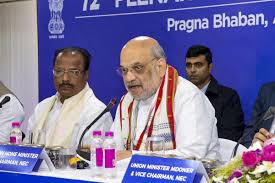
- 23 Dec 2024
Overview:
The 72nd Plenary of the North Eastern Council (NEC), concluded in Agartala, Tripura, marking the second time the city hosted this significant event since 2008. The plenary featured a series of high-level discussions focused on accelerating development and addressing the socio-economic challenges of the North Eastern Region (NER), which includes Arunachal Pradesh, Assam, Manipur, Meghalaya, Mizoram, Nagaland, Sikkim, and Tripura.
Key Highlights:
- Pre-Plenary Technical Sessions: Central ministries presented their developmental agendas for the NER, charting a path forward for the region's growth and addressing key challenges.
- Main Plenary:
- Presiding Officers: The session was chaired by the Union Home Minister and NEC Chairman, Shri Amit Shah, along with DoNER Minister, Shri Jyotiraditya M. Scindia, and Minister of State, Dr. Sukanta Majumdar.
- Participants: Governors, Chief Ministers, Chief Secretaries, Planning Secretaries, and high-ranking officials from all eight northeastern states will engage in strategic discussions to foster regional development.
- Agartala as Host:
- Agartala's selection as the venue signifies the evolving role of the city in regional development, as plenary sessions are usually held in Shillong and Guwahati.
- Significance of the NEC:
- The North Eastern Council (NEC), established in 1971, plays a pivotal role in the socio-economic development of the region. It was initially an advisory body but has evolved into a regional planning agency with a larger mandate.
- The NEC has contributed significantly to the development of critical infrastructure in the region, such as over 11,500 kilometers of roads, power generation through NEEPCO, and educational institutions like RIMS.
- Prime Minister's Vision for the NER:
- The Prime Minister’s vision for the region revolves around recognizing it as 'Ashta Lakshmi'—symbolizing immense potential and cultural richness. The NEC is central to realizing this vision through initiatives like the PM-DevINE scheme.
Key Achievements of the NEC:
- Over 11,500 kilometers of road construction, improving regional connectivity.
- Increased power generation capacity via projects managed by NEEPCO.
- Established institutions like the Regional Institute of Medical Sciences (RIMS) and others that cater to regional educational and technical needs.
Recent Focus and Shift in Governance:
- In the 72nd Plenary, the Union Home Minister highlighted a shift in the focus of police forces in northeastern states, urging them to focus not just on insurgency control but on ensuring the constitutional rights of citizens, reflecting a new governance phase in the region.
National Farmers' Day
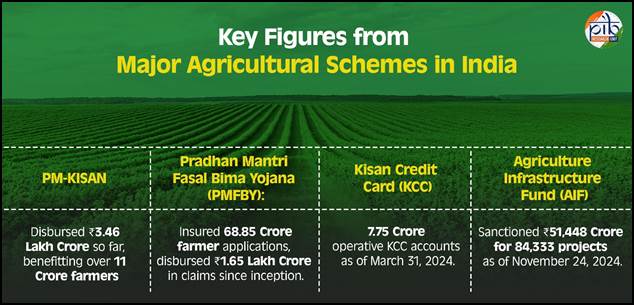
- 23 Dec 2024
In News:
National Farmers' Day, also known as Kisan Diwas, is celebrated annually on December 23rd to honor the vital contributions of Indian farmers and commemorate the birth anniversary of Chaudhary Charan Singh, India's fifth Prime Minister. A passionate advocate for rural development and farmers' welfare, Charan Singh's policies laid the foundation for several reforms aimed at uplifting the agrarian economy. His contributions continue to inspire government initiatives that prioritize the welfare of farmers, fostering sustainable agricultural growth and ensuring food security for the nation.
The Legacy of Chaudhary Charan Singh
Chaudhary Charan Singh was born on December 23, 1902, in Noorpur, Uttar Pradesh. His deep understanding of rural issues and commitment to improving farmers’ lives earned him the title of "Kisan Leader". Throughout his political career, he championed reforms such as the Debt Redemption Bill (1939), which alleviated the financial burdens of farmers, and the Land Holding Act (1960), which promoted fair distribution of agricultural land. He also advocated for Minimum Support Price (MSP), and his policies laid the groundwork for NABARD and other farmer-centric institutions.
Significance of Kisan Diwas
Kisan Diwas highlights the importance of agriculture in India’s economy and employment, with farmers constituting nearly 50% of the workforce. The day emphasizes the need for policies that address farmers' challenges such as climate change, financial constraints, and technological adoption. It also serves as a reminder of the necessity to empower farmers through innovative solutions, financial security, and sustainable farming practices.
Key Government Initiatives for Farmer Welfare
The Indian government has launched several schemes to address the challenges faced by farmers and support their socio-economic upliftment:
- Pradhan Mantri Kisan Samman Nidhi (PM-KISAN): Provides direct income support to small and marginal farmers.
- Pradhan Mantri Fasal Bima Yojana (PMFBY): Offers crop insurance to mitigate financial risks due to crop loss.
- Pradhan Mantri Kisan Maandhan Yojana (PM-KMY): A pension scheme for farmers to ensure long-term social security.
- Soil Health Card Scheme: Promotes efficient fertilizer use and soil health by providing farmers with personalized soil health reports.
- Farmer Producer Organizations (FPOs): These entities help farmers collectively access markets, reduce costs, and improve bargaining power.
- Modified Interest Subvention Scheme (MISS): Provides affordable credit to farmers, especially for agriculture-related activities.
- Kisan Credit Card (KCC): Helps farmers access timely credit for agricultural purposes at concessional rates.
Significant Budget Allocations and New Schemes
The government has drastically increased its budget allocation to the agriculture sector. From Rs. 21,933.50 crore in 2013-14, the budget has risen to Rs. 1,22,528.77 crore for 2024-25, underlining the government's commitment to farmer welfare and sustainable agricultural development.
Notable Initiatives:
- Namo Drone Didi Scheme: This initiative, aimed at empowering Women Self-Help Groups (SHGs), supports the use of drones for agricultural purposes, including fertilizer and pesticide application, with 80% financial assistance.
- Clean Plant Programme (CPP): Enhances the quality and productivity of horticulture crops by ensuring disease-free planting material.
- Digital Agriculture Mission: Aims to modernize farming with digital infrastructure, including crop estimation surveys and e-agriculture platforms.
- National Mission on Natural Farming (NMNF): Encourages chemical-free, sustainable farming practices.
Farmers' Role in Nation-Building
India’s agricultural sector not only sustains the livelihoods of millions but also contributes significantly to the country's GDP. In FY 2023-24, agriculture contributed 17.7% to the Gross Value Added (GVA). With over 54% of the country's land dedicated to agriculture, farmers are critical to food security and rural development.
In 2023-24, India achieved a record foodgrain production of 332.2 million tonnes, illustrating the resilience of Indian farmers in ensuring food availability despite challenges like climate change.
Next Generation DNA Sequencing Facility (NGS)
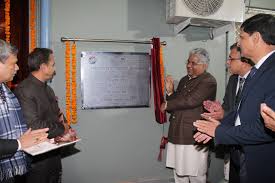
- 22 Dec 2024
Recently, the Union Minister Shri Bhupender Yadav inaugurated two groundbreaking facilities at the Wildlife Institute of India (WII), Dehradun: the Advanced Facility for Pashmina Certification and the Next Generation DNA Sequencing (NGS) Facility. These facilities are designed to enhance India’s capabilities in wildlife conservation and support the growth of traditional crafts like Pashmina weaving.
Key Highlights
Next Generation DNA Sequencing Facility (NGS)
The NGS facility is a cutting-edge research tool that enables the high-throughput analysis of entire genomes. This technology is pivotal in studying wildlife genetics and biodiversity by decoding millions of DNA sequences at once.
Applications in Wildlife Conservation:
- Genetic Diversity and Health: NGS helps assess the genetic diversity of species and their population health.
- Evolutionary Relationships: It aids in understanding the evolutionary history and unique adaptations of species.
- Disease Surveillance: The technology supports studying pathogen-host interactions and monitoring diseases affecting wildlife.
- Combating Illegal Wildlife Trade: NGS can help detect illegal wildlife trade and the movement of endangered species.
- Impact of Climate Change: It is crucial for studying how climate change affects genetic diversity and species survival.
This facility positions WII as a leading hub for molecular research, enabling more precise conservation efforts and studies on endangered species like tigers, elephants, and riverine dolphins.
Advanced Facility for Pashmina Certification
Launched under a Public-Private Partnership (PPP) model between WII and the Export Promotion Council for Handicrafts (EPCH), the Pashmina Certification Centre (PCC) has been significantly upgraded. The facility now includes a Scanning Electron Microscope (SEM) with Energy Dispersive Spectroscopy (EDS) for advanced wool testing and certification.
Key Features of the Upgraded Facility:
- Fiber Analysis: The SEM-EDS technology ensures accurate identification and certification of Pashmina fibers, free from any prohibited materials.
- Unique ID and E-certificates: Each certified product is tagged with a unique ID and e-certificate, enhancing traceability and authenticity.
- Global Trade Facilitation: The certification process eliminates delays at exit points, ensuring smoother international trade for certified Pashmina products.
The PCC has already certified over 15,000 Pashmina shawls and plays a crucial role in supporting the livelihoods of artisans and weavers in Jammu & Kashmir. By ensuring the authenticity of Pashmina, the facility also helps combat the illegal trade of Shahtoosh wool, which is harmful to the Tibetan antelope (Chiru).
Significance for Artisans and Conservation:
- Support for Artisans: The upgraded facility helps increase the credibility of Pashmina products in global markets, benefiting local artisans and weavers.
- Conservation Impact: By certifying genuine Pashmina products, the initiative indirectly contributes to the conservation of the Tibetan antelope by reducing illegal poaching and trade.
- Sustainability: The PCC is a self-sustaining model that not only supports conservation but also generates revenue and creates job opportunities.
Overview of the Genome India Project
The Genome India Project is a gene mapping initiative launched by the Department of Biotechnology, aiming to create a comprehensive database of genetic variations across the Indian population. The project focuses on understanding genetic diversity and its implications for health, agriculture, and biodiversity conservation in India.
Goals:
- Comprehensive Gene Mapping: The project seeks to map the genetic variations found within India’s diverse population, enabling better healthcare and disease management.
- Conservation and Biodiversity: Insights from the project will also aid in wildlife conservation by understanding the genetic health of endangered species and their ability to adapt to environmental changes.
This initiative is aligned with India’s broader goals of using advanced technologies to address modern conservation challenges and foster a sustainable future.
India’s National Quantum Mission
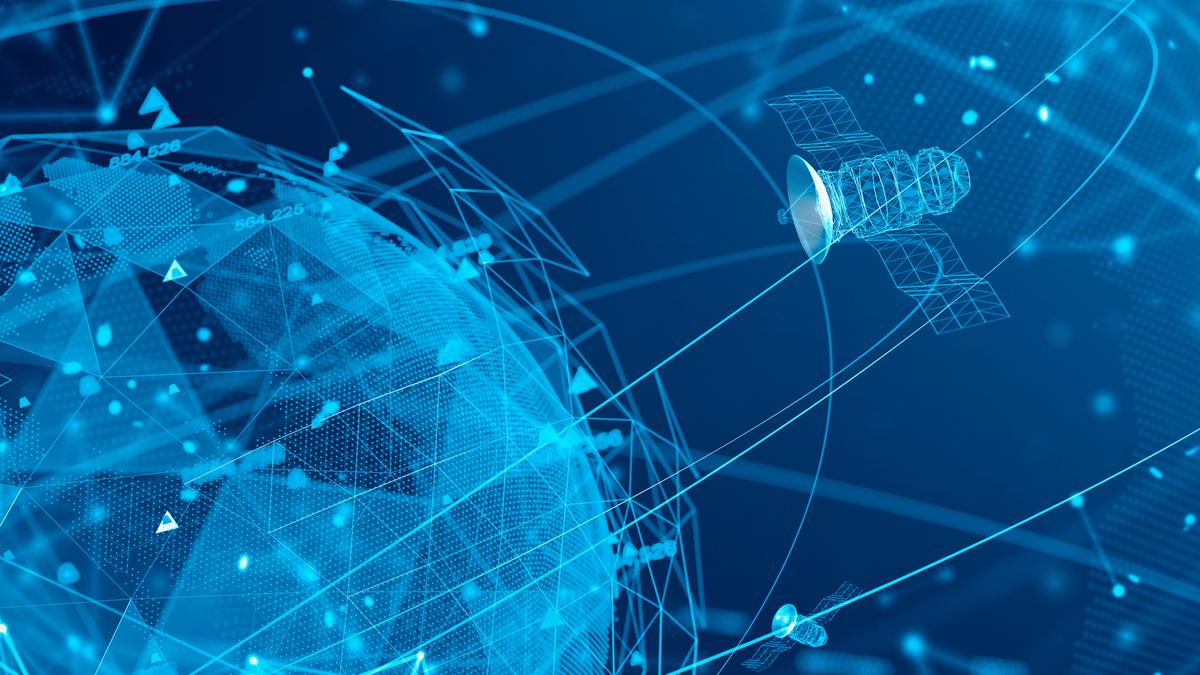
- 22 Dec 2024
In News:
India is preparing to launch its first quantum satellite within 2-3 years as part of its National Quantum Mission (NQM), a significant initiative aimed at positioning India as a global leader in quantum technologies. This satellite will play a pivotal role in enhancing the security of communications, particularly in the face of the potential threat posed by quantum computers to existing cryptographic systems.
What is a Quantum Satellite?
A quantum satellite is a type of communication satellite that uses quantum physics principles to secure data transmission. Unlike conventional satellites that rely on classical encryption, quantum satellites leverage quantum mechanics to achieve unbreakable encryption through Quantum Key Distribution (QKD).
Key Features:
- Quantum Key Distribution (QKD): Ensures secure key sharing, revealing any attempts of eavesdropping.
- Security Advantage: Provides "unconditional security" by detecting any interference during the transmission process.
- Data Transmission: Unlike conventional satellites that encode data in classical bits, quantum satellites encode information in quantum states or qubits.
What is Quantum Cryptography?
Quantum cryptography is a technique that uses the laws of quantum mechanics to secure communications. The most widely used method is Quantum Key Distribution (QKD), which ensures that the keys used to encrypt and decrypt messages remain secret and unbreakable.
Key Mechanisms:
- Quantum Measurement: Any attempt to measure the quantum state (such as a photon carrying information) changes its state, alerting the sender and receiver to potential eavesdropping.
- Quantum Entanglement: When two quantum particles (photons) are entangled, a change in one will instantaneously affect the other, ensuring that the key remains secure.
Why is Quantum Satellite Important?
The advent of quantum computing threatens the cryptographic methods that secure current digital communications. Quantum computers, with their vast computational power, could potentially crack encryption codes that are currently deemed secure. Quantum satellites aim to counteract this threat by using quantum cryptography to make communications tamper-proof.
Security in the Quantum Era:
- Classical Encryption: Relies on mathematical problems that are difficult to solve without the decryption key.
- Quantum Encryption: Uses quantum properties, such as superposition and entanglement, to offer superior security.
National Quantum Mission (NQM)
The National Quantum Mission (NQM) was approved by the Union Cabinet in April 2023 with a budget of ?6,000 crore for implementation over eight years (2023-2031). The mission aims to accelerate the development and application of quantum technologies, with a focus on quantum communication, quantum computing, quantum sensing, and quantum metrology.
Key Objectives:
- Development of Quantum Computers: Building intermediate-scale quantum computers with 50-1000 qubits.
- Quantum Communication: Establishing secure, satellite-based quantum communication systems within India and internationally.
- Research and Innovation: Fostering quantum technologies and creating a self-reliant ecosystem.
India’s Advancements in Quantum Technology
India is making significant progress in quantum research and communication. The Raman Research Institute in Bengaluru has identified Hanle, Ladakh as an ideal location for quantum communication experiments due to its optimal atmospheric conditions.
The Indian Space Research Organisation (ISRO) has already demonstrated successful free-space quantum communication over short distances (300 meters). The upcoming quantum satellite will build upon this progress to create secure quantum communication networks within India and internationally.
Global Context: Micius Satellite and China’s Lead
China is a global leader in quantum communications, having launched the world’s first quantum satellite, Micius, in 2016. Micius demonstrated the feasibility of secure quantum communication by generating pairs of entangled photons. India’s quantum satellite will build on this technology to create robust, long-range quantum communication networks.
Limitations of Quantum Key Distribution (QKD)
Despite its promise, QKD faces several limitations:
- Technological Maturity: The technology is still in the experimental phase, and large-scale commercial implementation is not yet feasible.
- Authentication Issues: QKD lacks reliable methods to authenticate the transmission source, leaving it vulnerable to impersonation attacks.
- Infrastructure Costs: Establishing and maintaining QKD networks requires specialized hardware, leading to higher costs.
- Denial-of-Service Risks: Eavesdroppers can trigger the abort mechanism, leading to transmission interruptions.
- Signal Loss: Atmospheric and distance-related attenuation can degrade the quality of quantum signals.
National Quantum Mission and Sectoral Impact
The NQM aligns with India's national priorities, including Digital India, Make in India, and Start-up India. The mission’s outcomes are expected to impact various sectors, such as:
- Healthcare: Quantum computing for drug design and medical research.
- Space Exploration: Enhancing communication security for space missions.
- Banking and Financial Services: Strengthening data security and transaction integrity.
- Energy: Improving energy systems and smart grids through advanced sensing technologies.
IRIS²: The European Union's Ambitious Satellite Network
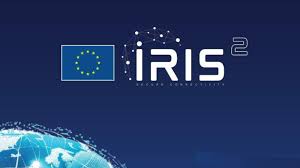
- 21 Dec 2024
In News:
The European Union (EU) has announced the launch of IRIS² (Infrastructure for Resilience, Interconnectivity, and Security by Satellite), a highly ambitious space program that aims to enhance satellite connectivity, security, and resilience for both governmental and civilian applications. The initiative is set to rival major global satellite systems, such as Elon Musk's Starlink, and aims to provide secure, high-speed broadband connectivity, particularly in underserved regions.
Key Features of IRIS²:
- Satellite Constellation: The system will consist of 290 satellites, including 264 in Low Earth Orbit (LEO) and 18 in Medium Earth Orbit (MEO).
- First Launch: The first satellite for the program is scheduled for launch in 2029.
- Secure Connectivity: IRIS² is designed to provide secure, high-speed broadband services, particularly for European regions that lack reliable connectivity.
- Collaboration: The project is a collaboration between the EU, the European Space Agency (ESA), and private sector partners, including SES, Eutelsat, and Airbus.
- Funding: The program is funded through a €10.6 billion (~$11 billion) investment, with a 12-year concession for its implementation.
Applications of IRIS²:
- Governmental Use:
- Border Surveillance: Enhanced monitoring for national security.
- Crisis Management: Reliable communication during natural disasters and emergencies.
- Infrastructure Security: Safeguarding key national infrastructure.
- Defense: Boosting military communication resilience.
- Civilian Use:
- Broadband Access: Providing internet access in rural and underserved areas.
- Smart Energy: Supporting management of energy grids and related technologies.
- Transportation: Ensuring reliable communication and navigation in aviation, maritime, and automotive sectors.
- Remote Healthcare: Improving healthcare access in remote locations.
Significance of IRIS²:
- Strategic Asset: The program will strengthen EU sovereignty in space technology and improve its technological independence, reducing reliance on non-European satellite systems.
- Cyber and Communication Resilience: IRIS² is designed to enhance resilience against cyber threats and communication disruptions, ensuring uninterrupted service for both public and private sectors.
- Commercial Benefits: The satellite network will provide high-speed connectivity for businesses across Europe, offering a boost to commercial activities in remote and underserved areas.
- Complementary to Existing EU Programs: IRIS² complements other EU space initiatives, such as Copernicus (Earth observation) and Galileo (satellite navigation), enhancing the EU's capabilities in the space sector.
Overview of the IRIS² Satellite Network:
- Deployment in LEO and MEO:
- 264 satellites in LEO will provide low-latency communication for a wide range of applications.
- 18 satellites in MEO will offer broader coverage and support for global connectivity.
- Funding and Partners: The program is funded by the EU, ESA, and private firms, including SES, Eutelsat, and Airbus, ensuring both public and private sector involvement in the project.
- Applications:
- The network will provide secure satellite services for critical government functions, including surveillance, defense, and crisis management.
- It will also support civilian uses, such as broadband, smart grids, and transportation, and will facilitate cloud-based services.
Strategic and Geopolitical Importance:
- Boost to European Competitiveness: By developing its own satellite system, the EU will enhance its competitive position in the global space sector.
- Security and Autonomy: IRIS² will help Europe maintain control over its communication infrastructure, strengthening its autonomy and reducing dependence on external players for critical services.
- Resilience in Crisis Situations: In times of disruption (e.g., natural disasters, cyberattacks), IRIS² will ensure that Europe can maintain secure, reliable connectivity.
2023 National Tansen Samman
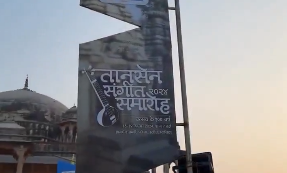
- 21 Dec 2024
In News:
- The prestigious National Tansen Samman for 2023 was conferred upon Pt. Swapan Choudhary, a renowned tabla maestro from Kolkata, at the National Tansen Festival held in Gwalior, Madhya Pradesh.
Key Highlights:
- Tansen Festival: This festival, renowned for its celebration of classical music, is organized annually in Gwalior, which is considered the music capital of Madhya Pradesh.
- Prize Details: As part of the honor, Pt. Swapan Choudhary was presented with an honorarium of five lakh rupees, a citation plaque, and a shawl-shriphal.
- About the Award:
- The National Tansen Samman was established in 1980 by the Madhya Pradesh government to recognize exceptional contributions to Indian classical music.
- It is named after Tansen, one of India's most celebrated classical musicians.
- The award is the highest national honor in the field of Indian classical music.
- Additional Award:
- Raja Mansingh Tomar Samman for 2023 was awarded to Sanand Nyas, an institution from Indore. This institution has been active for 35 years in the promotion of classical music, drama, and cultural festivals.
- Pt. Swapan Choudhary’s Remark: In response to receiving the honor, Pt. Choudhary expressed his gratitude and pride in joining the ranks of distinguished artists awarded the National Tansen Samman.
About Tansen: The Iconic Musician
- Legacy: Tansen, also known as Miyan Tansen, was a prominent Indian classical musician, composer, and vocalist. He is credited with popularizing several ragas and revolutionizing the Indian classical music tradition.
- Role at Akbar’s Court: Tansen was one of the Navaratnas (nine jewels) in the court of Mughal Emperor Akbar. He held the title of Mian, meaning "learned man," bestowed upon him by Akbar.
- Contributions:
- Tansen is famous for his compositions, including the introduction of notable ragas such as Miyan ki Malhar, Miyan ki Todi, and Darbari.
- He also improved the plucked rabab, which is of Central Asian origin, enhancing its role in Indian classical music.
- Historical Influence: Tansen's life and work are surrounded by extensive legend, and his contributions remain deeply influential in the development of Indian classical music today.
Parliamentary Standing Committee on Rural Development & Panchayati Raj (PSC) and MGNREGA
- 20 Dec 2024
In News:
Recently, the Parliamentary Standing Committee (PSC) on Rural Development and Panchayati Raj highlighted several issues within the Mahatma Gandhi National Rural Employment Guarantee Scheme (MGNREGS). The committee recommended reforms to address these challenges, especially concerning wage rates, workdays, payment systems, and infrastructure.
Key Challenges in MGNREGS Implementation:
- Wages Not Aligned with Inflation:
- MGNREGA wage rates have failed to keep pace with inflation, diminishing the purchasing power of rural workers. This discourages workers from completing the full 100 workdays.
- The wage guarantee of 100 days per household often falls short, especially during times of natural calamities or post-pandemic recovery.
- Revision of Permissible Works:
- The list of allowable work under MGNREGA is outdated and doesn't cover all rural needs, such as flood protection or land erosion management. Delayed revisions limit its effectiveness in addressing region-specific challenges.
- Delayed Payment of Wages:
- Issues like Aadhaar-based payment system (ABPS) glitches, inactive Aadhaar details, or frozen bank accounts often lead to delayed wage payments.
- The delay in wages undermines the scheme's goal of providing livelihood support.
- Unemployment Allowance:
- Those who apply for work but are not provided employment within 15 days are entitled to a daily unemployment allowance. However, this allowance is rarely paid, and when it is, the amounts are insufficient.
- Weak Social Audits:
- Social audits are a vital mechanism to ensure transparency and accountability. However, in the 2020-21 fiscal year, only 29,611 Gram Panchayats out of a total were audited, pointing to the weak social audit system.
- Lack of Ombudsman:
- Despite the provision for 715 ombudsmen, only 263 have been appointed. This reduces the oversight and accountability of the scheme.
Recommendations for MGNREGS Reform by the PSC:
- Revision of Wage Rates:
- Link MGNREGA wages to an inflation index, ensuring wages reflect the rising cost of living in rural areas.
- The base year (2009-2010) should be updated to align with current inflation trends.
- Increase Days of Work:
- The PSC recommended increasing the guaranteed workdays from 100 to 150 days. This will provide better livelihood security, especially in times of economic distress.
- Improvement in Payment Mechanisms:
- The committee recommended maintaining alternative payment systems alongside ABPS to prevent wage delays.
- A streamlined process should be put in place to ensure timely wage disbursement, reducing bureaucratic hurdles.
- National Mobile Monitoring System (NMMS):
- The committee stressed the importance of training programs to help beneficiaries effectively use the NMMS.
- It also suggested retaining alternative attendance methods to avoid exclusion due to technological barriers. NMMS helps enhance transparency and accountability by tracking attendance and work progress.
- Sufficient Fund Allocation:
- The committee emphasized the need for adequate financial allocations for MGNREGS to make it more effective in providing livelihood security to rural households.
Additional Context and Statistics:
- In 2024-25, the average wage increase under MGNREGA was just Rs 28/day.
- The MGNREGA wage increase for 2023-24 ranged from 2%-10%.
- The Consumer Price Index for Agricultural Labour (CPI-AL) is used to determine wage rates, although Dr. Nagesh Singh Committee (2017) recommended using the CPI Rural instead.
About the Parliamentary Standing Committee on Rural Development & Panchayati Raj (PSC):
- Established: August 5, 2004.
- Jurisdiction: The committee oversees the Ministry of Rural Development and the Ministry of Panchayati Raj.
- Composition: 31 members – 21 from Lok Sabha and 10 from Rajya Sabha.
- Functions:
- Reviews Demands for Grants and reports.
- Examines Bills referred by the Speaker or Chairman.
- Reviews the annual reports of relevant ministries.
- Considers national policy documents.
About MGNREGA:
- Launched: 2005 by the Ministry of Rural Development.
- Objective: Provides 100 days of unskilled manual work at minimum wages for rural households annually.
- Key Features:
- Legal Guarantee: Work must be provided within 15 days of request.
- Unemployment Allowance: If work isn't provided within 15 days, beneficiaries are entitled to a daily allowance.
- Women-Focused: At least one-third of beneficiaries are women.
- Social Audits: Mandated by the Gram Sabha for all projects under the scheme.
Reimposition of Protected Area Permit (PAP) in Manipur, Mizoram, and Nagaland
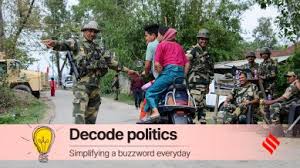
- 20 Dec 2024
In News:
The Ministry of Home Affairs (MHA) of the Government of India has recently reinstated the Protected Area Regime (PAR) for the states of Manipur, Mizoram, and Nagaland, which are strategically located along the international border with Myanmar. This move comes amid growing security concerns, particularly the influx of migrants from Myanmar, which has been cited as a significant factor in the ongoing conflicts in the region.
What is Protected Area Permit (PAP)?
A Protected Area Permit (PAP) is a special permission required for foreign nationals to visit certain areas of India deemed sensitive due to their proximity to international borders or other security-related concerns. The regulations governing the PAP are laid down under the Foreigners (Protected Areas) Order, 1958, which restricts the entry of foreigners to designated regions within India.
Purpose of PAP:
The PAP regime serves multiple critical objectives:
- National Security: It ensures the monitoring and regulation of foreign nationals in sensitive border areas.
- Preservation of Local Communities: The regime safeguards indigenous populations and their unique cultural heritage.
- Environmental Conservation: The permit helps minimize ecological disturbances in fragile regions, ensuring sustainable tourism and development.
Key Features of PAP Regime:
- Eligibility: All foreign nationals, excluding Bhutanese citizens, must obtain a PAP to enter these designated areas. The permit can be granted for specific regions, routes, and time periods.
- Validity: The PAP is typically valid for 10 days with the possibility of extension.
- Restricted Areas: Certain foreign nationals, particularly those from Afghanistan, China, and Pakistan, require prior approval from the MHA to enter these regions.
- Tourism and Other Permits: While foreign nationals can visit these regions for tourism purposes under the PAP, non-touristic visits require special permission from the MHA.
- Registration: Foreigners must register with the Foreigners Registration Officer (FRO) within 24 hours of arrival in the protected area.
Historical Context and Reimposition:
The PAP regime was lifted for Manipur, Mizoram, and Nagaland in 2011, as part of efforts to boost tourism in the region. However, due to rising security concerns related to illegal immigration and ethnic tensions, the MHA reimposed the PAP in 2025. The government’s move aligns with its broader national security strategy to better control foreign movements in sensitive border regions, particularly those with Myanmar, where the Free Movement Regime (FMR) had previously allowed easier cross-border travel.
Background on Security Concerns:
The influx of individuals from Myanmar, particularly members of the Chin community, which shares ethnic ties with the Kuki-Zomi communities in India, has been a source of tension. The Manipur government has repeatedly emphasized that uncontrolled migration has contributed to the unrest in the state. Additionally, the decision to end the FMR between India and Myanmar has further intensified the debate over border security and migration.
Impact on Tourism and Local Communities:
While the reimposition of the PAP is seen as a measure to strengthen security, it has raised concerns in states like Mizoram and Nagaland, which have been actively promoting tourism. For example, Nagaland’s Hornbill Festival recently attracted over 200,000 visitors, including foreign nationals. The reintroduced restrictions may dampen tourism in these states, which were previously exempt from the PAP to encourage foreign visits.
Key Legal Provisions Under the PAP Regime:
- Foreigners (Protected Areas) Order, 1958: This order mandates the requirement of a PAP for foreigners visiting areas close to international borders.
- Foreigners (Restricted Areas) Order, 1963: This order covers areas that require a Restricted Area Permit (RAP) for foreign nationals, such as the Andaman and Nicobar Islands.
States Affected by the PAP Regime:
The PAP regime affects regions close to India’s international borders, including the entire states of Arunachal Pradesh, Sikkim, Manipur, Mizoram, Nagaland, and parts of Himachal Pradesh, Jammu & Kashmir, Rajasthan, and Uttarakhand.
National Wildlife Health Policy (NWHP)

- 19 Dec 2024
In News:
The Central Zoo Authority, under the aegis of the Ministry of Environment Forest and Climate Change (MoEF&CC) has taken up the development of the ‘National Wildlife Health Policy in consultative workshop held in Indira Prayavaran Bhawan, New Delhi.
Key Highlights:
- Organized by: Central Zoo Authority (CZA), under the Ministry of Environment, Forest and Climate Change (MoEF&CC).
- Event: Consultative workshop held at Indira Prayavaran Bhawan, New Delhi, on the development of the National Wildlife Health Policy (NWHP).
- Purpose: To address health threats to wildlife and integrate wildlife health management with public and animal health.
Goals of the National Wildlife Health Policy (NWHP):
- One Health Approach: Integrates human, animal, and environmental health, recognizing their interdependence.
- Focus Areas:
- Prevent and control zoonotic diseases.
- Improve disease surveillance and early detection, especially in protected areas.
- Promote biosecurity measures and epidemic preparedness.
- Enhance research and development in wildlife health management.
- Advocate for community awareness on wildlife health and conservation.
Key Features of the Policy:
- Wildlife Health Management Unit (WHMU): Proposed unit to oversee the policy's implementation.
- Collaboration: Involves coordination with various stakeholders including government ministries, NGOs, academic institutions, and veterinary universities.
- Disease Surveillance: Establish protocols for monitoring and controlling wildlife diseases, especially in protected areas.
- Capacity Building: Training programs for professionals involved in wildlife conservation and health management.
- Biosecurity Protocols: Strengthen measures to reduce disease transmission risks.
Supporting Institutions:
- GISE Hub, IIT Bombay and Office of the Principal Scientific Adviser to the Government of India are providing support in policy development.
Challenges Addressed:
- Wildlife in India faces various health challenges including:
- Infectious diseases (e.g., Canine Distemper Virus).
- Habitat loss and climate change impacts.
- Illegal wildlife trade and other anthropogenic pressures.
- India has over 91,000 wildlife species and more than 1,000 protected areas, making comprehensive health management crucial.
Expected Outcomes:
- Comprehensive Framework: A science-based framework for wildlife health, integrating ecological, human, and animal health.
- Disease Outbreak Response: Structured mechanisms for disease management, surveillance, and legal frameworks.
- Public Health Integration: Safeguard wildlife health, which directly impacts balanced ecosystems and biodiversity.
Policy’s Strategic Alignment:
- National Wildlife Action Plan (2017-31): The policy complements the action plan’s 103 conservation actions and 250 projects, including disease surveillance protocols in tiger reserves and other protected areas.
- Research & Development: Encourages the development of strategies to manage wildlife health and prevent disease outbreaks.
Eastern Maritime Corridor (EMC)
- 19 Dec 2024
In News:
In mid-2024, India surpassed China as the largest importer of Russian oil. This milestone has been accompanied by the operationalization of a new maritime route, the Eastern Maritime Corridor (EMC), which connects Chennai in India to Vladivostok in Russia. The new sea route is significantly reducing both shipping times and costs, facilitating smoother commodity trade between the two countries, particularly crude oil shipments.
The Eastern Maritime Corridor (EMC)
The EMC, covering a distance of about 5,600 nautical miles, has reduced the shipping time between India and Russia’s Far East by up to 16 days. The Chennai-Vladivostok route now takes just 24 days, compared to over 40 days using the traditional St. Petersburg-Mumbai route. This reduction in transit time makes it a highly efficient route for transporting goods such as crude oil, coal, LNG, fertilizers, and other commodities. Additionally, this new corridor supports India’s maritime sector and aligns with the country’s broader vision for maritime growth and regional strategic engagement.
Key Features of the EMC:
- Efficiency and Cost Savings: The route cuts shipping time and distance, reducing costs associated with longer transit periods. For example, a ship traveling between Vladivostok and Chennai now takes only about 12 days at cruising speed, compared to the traditional route's 40+ days.
- Strategic Importance: Vladivostok is Russia’s largest Pacific port, and the corridor strengthens India's strategic presence in the region. This maritime route bypasses traditional chokepoints like the Suez Canal, offering faster, more direct access to key markets.
- Diversification of Trade: Besides crude oil, the EMC facilitates the transportation of coal, LNG, fertilizers, and metals, diversifying India's trade portfolio with Russia. It also helps maintain supply chains for essential goods.
- Boosting India’s Maritime Sector: The corridor supports India’s Maritime Vision 2030, which aims to enhance the efficiency and reach of India's maritime trade, a sector responsible for over 70% of the country’s trade value.
Economic and Strategic Impact:
- The new Eastern Maritime Corridor is particularly significant for India’s energy needs. As the world’s third-largest consumer of crude oil, India imports over 85% of its crude oil demand. The growing imports of Russian crude, especially the Urals grade, are crucial for securing India’s energy future. Additionally, Russia’s competitive pricing on crude, coupled with the savings on shipping costs through the EMC, makes Russian oil even more attractive.
- Beyond the economic benefits, the EMC also supports India’s broader strategic goals, including strengthening ties with Russia, a key partner in defense, nuclear cooperation, and regional geopolitics. The closer maritime links also help counterbalance China's growing dominance in the Pacific region, aligning with India's Act Far East Policy and enhancing trade and diplomatic engagement with East Asia and Russia.
Other Key Maritime Corridors Relevant to India:
- International North-South Transport Corridor (INSTC): A 7,200 km multimodal route linking the Indian Ocean with Russia, offering alternative trade routes to Europe and Central Asia.
- India-Middle East-Europe Economic Corridor (IMEC): A recent project announced at the G20 Summit, which connects India, the Middle East, and Europe via rail, road, and maritime links, fostering greater regional integration.
- Northern Sea Route (NSR): A 5,600 km Arctic route offering shorter transit times between the Barents and Kara Seas and the Bering Strait, gaining importance due to growing imports of Russian energy resources.
In conclusion, the Eastern Maritime Corridor is reshaping India-Russia trade dynamics, boosting economic ties and strategic cooperation between the two nations. By facilitating faster and cheaper transportation, the EMC is not only beneficial for trade in crude oil but also for a range of other commodities, positioning India as a key player in the evolving global trade network.
One Nation, One Election
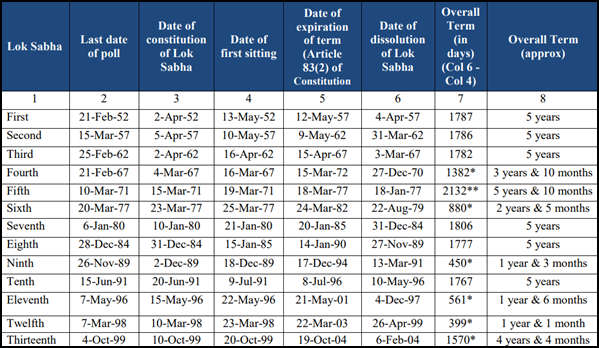
- 19 Dec 2024
In News:
The government has recently taken steps to implement "One Nation, One Election" by presenting two Constitution Amendment Bills in the Lok Sabha: the One Nation One Election – The Constitution 129th Amendment Bill 2024 and the Union Territories Laws Amendment Bill 2024.
Introduction to the Concept:
- Objective: Proposes synchronizing elections for Lok Sabha (national) and State Legislative Assemblies to be held on the same day.
- Purpose: Aims to reduce costs, minimize logistical challenges, and address governance disruptions caused by frequent elections.
- 2024 Report: The High-Level Committee Report on Simultaneous Elections, released in December 2024, outlines a roadmap for implementing this reform.
Historical Background:
- Previous Practice: From 1951 to 1967, Lok Sabha and State Assembly elections were conducted together.
- Disruptions: The practice was interrupted due to premature dissolutions and emergencies, leading to staggered elections across India.
High-Level Committee on Simultaneous Elections:
- Committee Formation: Headed by former President Ram Nath Kovind, formed on 2nd September 2023.
- Public Response: Over 21,500 responses, with 80% in favor.
- Political Party Responses: 32 political parties supported the idea, while 15 raised concerns about regional party marginalization.
- Expert Consultations: Majority of experts supported the reform, emphasizing resource optimization and reduced disruptions.
Committee Recommendations:
- Constitutional Amendments: Proposals to amend Articles 82A and 324A to enable simultaneous elections.
- Two-Phase Implementation:
- Phase 1: Synchronize elections for Lok Sabha and State Legislative Assemblies.
- Phase 2: Include Municipalities and Panchayats within 100 days.
- Single Electoral Roll: Creation of a unified electoral roll and EPIC for all levels of elections, reducing duplication and errors.
Rationale for Simultaneous Elections:
- Governance Consistency: Reduces focus on election preparation, allowing more attention to developmental work.
- Prevents Policy Paralysis: Mitigates disruptions caused by the Model Code of Conduct (MCC) during frequent elections.
- Resource Optimization: Reduces the need for personnel and resources for election duties, allowing better allocation to governance tasks.
- Preserves Regional Party Relevance: Local issues remain prioritized, ensuring regional parties' concerns are heard.
- Equitable Political Opportunities: Encourages diversification and inclusivity within political parties.
- Financial Benefits: Reduces the financial burden of conducting multiple elections, enhancing economic efficiency.
Conclusion:
- The concept of "One Nation, One Election" is a significant reform aimed at streamlining India's electoral processes. With broad public and political support, it promises improved governance, cost savings, and better resource management in the future.
Schengen Zone Membership
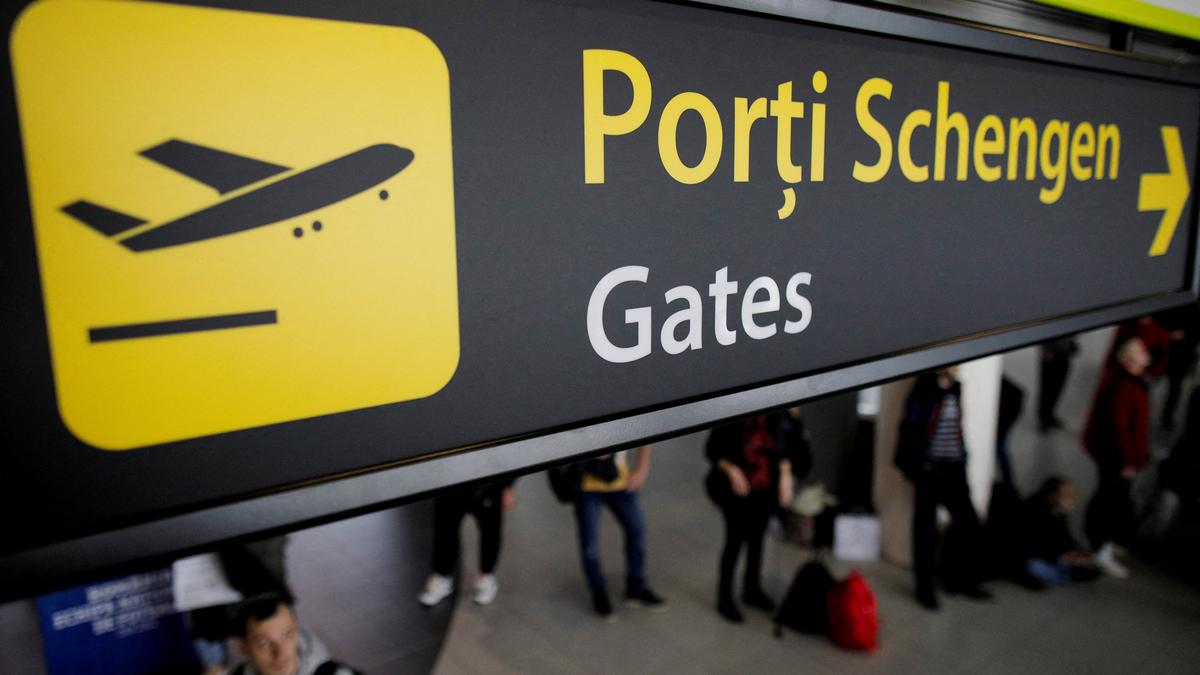
- 18 Dec 2024
In News:
Recently, the European Union (EU) cleared Bulgaria and Romania for full membership in the Schengen Zone, effective January 1, 2025. This marks the end of a 13-year wait for these Eastern European nations, which joined the EU in 2007.
Key Highlights:
- Schengen Integration: Until now, Bulgaria and Romania were partially integrated into the Schengen Zone, with air and sea travel without border checks since March 2024. However, land border controls were still in place due to Austria's objections, mainly due to concerns over migration and border security.
- Austria's Shift: Austria had blocked full entry for years but finally lifted its veto on December 9, 2024, after a border protection package was agreed upon. This package includes joint border guard deployment at the Bulgarian-Turkish border and temporary land border controls for six months.
Schengen Zone Details:
- What is the Schengen Zone?
- Created by the Schengen Agreement (1985) and the Schengen Convention (1990), it is the world’s largest area without internal border controls, allowing free movement across most EU countries and some non-EU countries. It currently includes 29 countries (25 EU states and 4 non-EU countries: Iceland, Liechtenstein, Norway, and Switzerland).
- Key Features:
- Free Movement: Over 425 million people can travel freely within the zone without border checks.
- Uniform Visa Policy: Short-term stays of up to 90 days are allowed for tourists and business travelers from outside the Schengen Area.
- Cross-Border Cooperation: The Schengen Information System (SIS) facilitates security and border management by sharing critical data between countries.
- Temporary Border Controls: Countries can temporarily reintroduce border controls for security reasons, after notifying other member states and the European Commission.
Bulgaria and Romania
- Bulgaria:
- Capital: Sofia
- Location: Southeastern Europe, bordered by the Black Sea, Romania, Turkey, Greece, North Macedonia, and Serbia.
- Political System: Parliamentary Republic
- Romania:
- Capital: Bucharest
- Location: Bounded by Ukraine, Moldova, Black Sea, Bulgaria, Serbia, and Hungary.
- Political System: Semi-Presidential Republic
Implications of Full Schengen Membership:
- Security and Unity: Romania and Bulgaria's full integration into the Schengen Zone is seen as a boost to both EU security and unity. It solidifies the EU's commitment to free movement while enhancing border security across Europe.
- Impact on Migration: With Bulgaria and Romania’s full membership, the EU’s border management system will be more integrated, helping to address ongoing migration challenges.
Exercise Agni Warrior
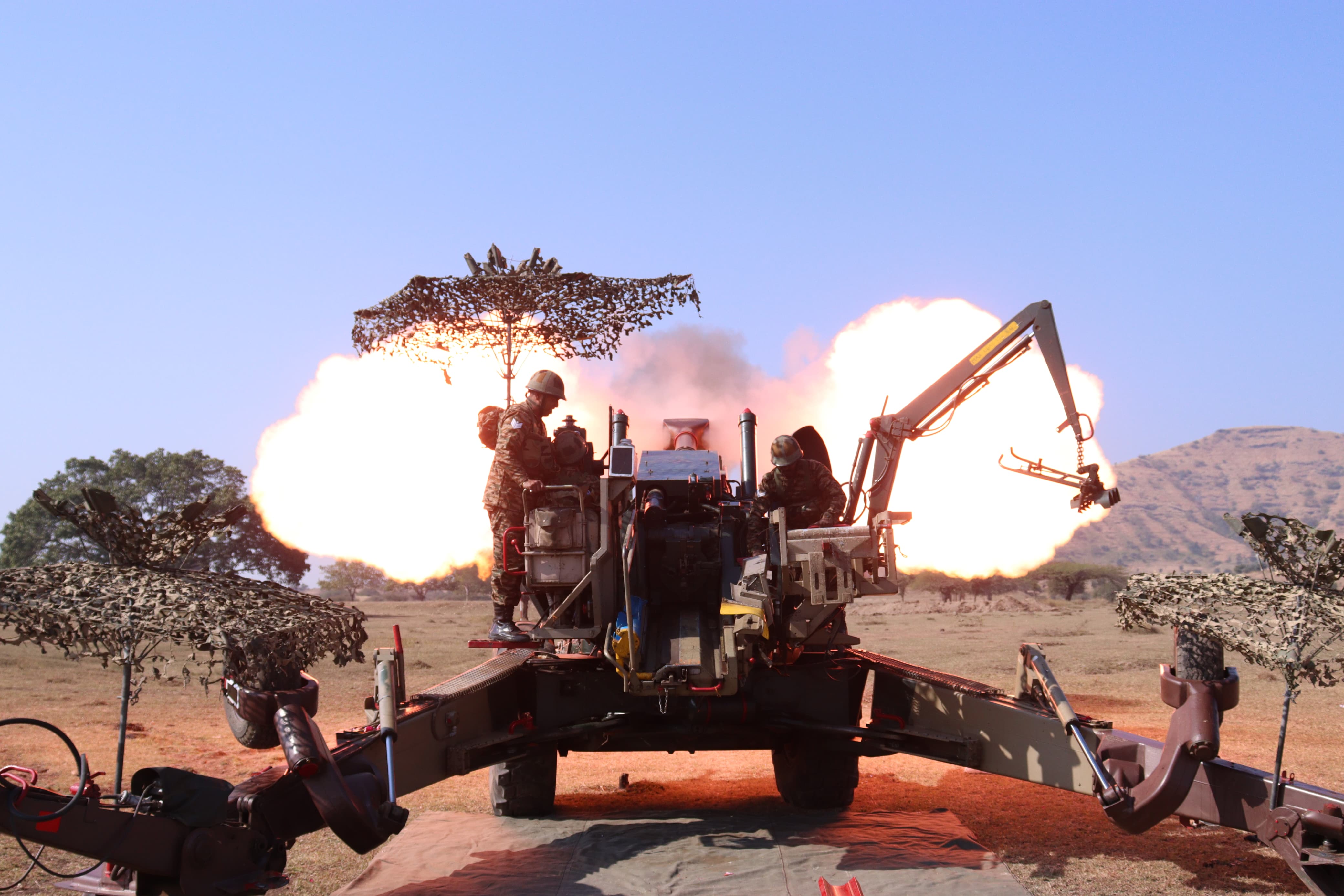
- 17 Dec 2024
In News:
The 13th edition of Exercise Agni Warrior (XAW-2024), a joint military drill between the Indian Army and the Singapore Armed Forces (SAF), concluded successfully at the Field Firing Ranges, Devlali, Maharashtra. The exercise focused on enhancing mutual understanding and interoperability between the two nations’ artillery units.
Key Facts:
- Participating Nations: India and Singapore
- Location: Field Firing Ranges, Devlali, Maharashtra
- Participants:
- 182 personnel from the Singapore Artillery
- 114 personnel from the Indian Army's Regiment of Artillery
- Objective: To maximize mutual understanding of drills and procedures for joint operations under the UN Charter, particularly in firepower planning and execution, utilizing advanced artillery technologies.
- Historical Context: The exercise began in 2004 under a bilateral agreement between India and Singapore and has evolved over the years, now marking 20 years of cooperation.
Purpose and Highlights:
The exercise aimed to reinforce the long-standing defense relationship between India and Singapore, focusing on:
- Joint Firepower Planning and Execution: Both forces demonstrated the use of New Generation Artillery Equipment, enhancing their firepower coordination.
- Enhancing Interoperability: The exercise emphasized seamless coordination between the two armies to operate as a multinational force under the UN Charter, addressing global security challenges.
- Knowledge Sharing: Personnel from both armies exchanged expertise on advanced artillery tactics, fostering a deeper understanding of each other's military capabilities.
- Technological Integration: Both sides integrated cutting-edge technologies, allowing the exchange of best practices in the use of artillery systems.
Key Objectives of XAW-2024:
- Enhanced Interoperability: To ensure smooth coordination in joint operations, fostering the ability to respond to regional security threats.
- Firepower and Coordination Techniques: Sharing expertise on artillery planning, coordination, and execution.
- Advanced Equipment Use: Testing and demonstrating modern artillery systems in joint operations, ensuring both forces are prepared for contemporary warfare.
Structure and Execution:
The exercise was structured to include pre-exercise training, field operations, and a post-exercise evaluation:
- Pre-Exercise: Both armies engaged in interactive sessions to familiarize themselves with each other's artillery tactics and advanced systems.
- Field Operations: Simulated combat scenarios tested joint firepower execution, emphasizing real-time problem-solving and decision-making under pressure.
- Post-Exercise Review: A thorough analysis identified areas for improving joint operations and coordination.
Strategic Significance:
- Strengthening Bilateral Ties: Agni Warrior reinforces the defense partnership, facilitating joint operations that support regional security.
- Regional Stability: The exercise underscores the commitment of both nations to peace and security in the Indo-Pacific region.
- Capacity Building: Both Indian and Singaporean forces gained exposure to sophisticated firepower planning and gained operational readiness for future deployments.
'Jalvahak' Scheme for Inland Waterways Promotion

- 15 Dec 2024
In News:
Govt Unveils ‘Jalvahak’ To Boost Inland Waterways, Cargo Movement Incentivised on NW1, NW2 & NW16
Key Highlights:
- Launch of 'Jalvahak' Scheme:
- Launched by: Union Minister for Ports, Shipping & Waterways, Shri Sarbananda Sonowal, on December 15, 2024.
- Objective: The scheme aims to promote the use of inland waterways for long-haul cargo transportation, reduce logistics costs, and alleviate congestion in road and rail networks.
- Targeted Waterways:
- The scheme focuses on three major National Waterways (NWs):
- NW 1: River Ganga
- NW 2: River Brahmaputra
- NW 16: River Barak
- The scheme focuses on three major National Waterways (NWs):
- Incentives:
- The scheme offers up to 35% reimbursement on operating expenses for cargo transported over 300 km via these waterways, particularly using the Indo-Bangladesh Protocol Route (IBPR).
- Encouraging Private Operators: The scheme also incentivizes the hiring of vessels owned by private operators to promote competition and efficiency.
- Scheduled Cargo Service:
- Service Launch: Fixed, scheduled cargo vessel services have been introduced, running between key locations:
- Kolkata - Patna - Varanasi - Patna - Kolkata (for NW 1)
- Kolkata - Pandu (Guwahati) (for NW 2 via IBPR)
- Transit Times: Predefined and fixed for efficiency:
- Kolkata to Patna: 7 days
- Patna to Varanasi: 5 days
- Kolkata to Varanasi: 14 days
- Kolkata to Pandu: 18 days
- Pandu to Kolkata: 15 days
- Service Launch: Fixed, scheduled cargo vessel services have been introduced, running between key locations:
- Economic and Environmental Impact:
- Cargo Shift Target: The initiative aims to shift 800 million tonne-kilometres of cargo by 2027.
- Growth Projections:
- 200 million tonnes of cargo by 2030.
- 500 million tonnes by 2047, supporting the Blue Economy and Atma Nirbhar Bharat initiatives.
- The move to waterways aims to reduce the pressure on India's roads and rail systems, contributing to a more sustainable and cost-effective logistics system.
- Strategic Goals:
- Modal Shift: The scheme seeks to achieve a shift of 800 million tonne-kilometres by 2027 with an investment of ?95.4 crores.
- Sustainability: Inland waterways are considered an environmentally friendly, efficient, and low-cost transportation mode, with a focus on sustainability.
- Logistics Optimization: This initiative is expected to help optimize supply chains for major shipping companies, freight forwarders, and trade bodies involved in bulk and containerized cargo.
- Implementation Agencies:
- Inland Waterways Authority of India (IWAI): The main body responsible for the development and regulation of inland waterways.
- Inland & Coastal Shipping Limited (ICSL): A subsidiary of the Shipping Corporation of India, responsible for the operation of vessels.
- Broader Impact:
- Economic Growth: The scheme is expected to foster economic growth by improving logistics efficiency.
- Decongestion: The initiative aims to decongest the road and rail transport systems, facilitating smoother movement of cargo.
- Regional Connectivity: Enhances connectivity, particularly in eastern India, benefiting areas along the Ganga, Brahmaputra, and Barak rivers.
- About the National Waterways:
- India has 14,500 km of navigable inland waterways, which include rivers, canals, and backwaters. These waterways are significantly under-utilized compared to other countries.
- The National Waterways Act, 2016 declared 111 waterways (including both existing and newly identified ones) for navigation.
- The Jalvahak scheme is part of India's broader strategy to unlock the potential of its inland waterways, offering an efficient, economical, and environmentally sustainable alternative for cargo transport.
India-Australia CCEA
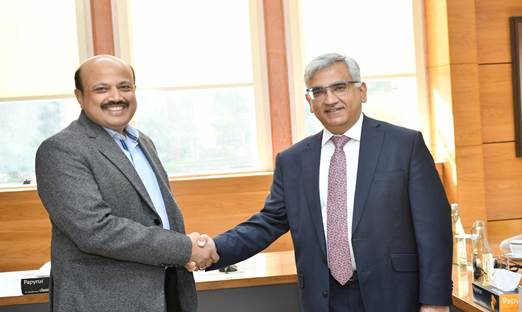
- 15 Dec 2024
In News:
The 3-day stocktake meeting took place in New Delhi, marking a significant step in strengthening the India-Australia trade and strategic partnership.
Key Highlights:
- Key Discussion Areas:
- Trade in goods and services.
- Mobility, agri-tech cooperation, and market access.
- Focus on ensuring the CECA delivers balanced benefits for both nations.
- Food security concerns and market access modalities aligned with India’s goals.
- Background on Negotiations:
- The discussions in New Delhi were a continuation of the 10th round of negotiations held in Sydney (August 2024).
- Both sides aimed to outline a path forward for the early conclusion of the CECA.
- Importance of CECA:
- CECA is a Free Trade Agreement (FTA) aimed at eliminating tariffs and liberalizing services sectors to enhance business opportunities and cooperation.
- It addresses five key areas: Goods, Services, Digital trade, Government procurement & **Rules of Origin/Product Specific Rules
- New areas under discussion include: Competition policy, MSMEs, Gender, Innovation, Agri-tech, Critical minerals & Sports
- Historical Context:
- CECA negotiations began in May 2011, were suspended in 2016, and resumed in September 2021.
- The India-Australia Economic Cooperation and Trade Agreement (ECTA) was signed in 2022, serving as a foundational agreement and a precursor to CECA.
- Trade Statistics (2023-24):
- India's imports from Australia: $16.2 billion.
- India's exports to Australia: $8 billion.
- Trade has grown significantly, with India being Australia’s 5th-largest trading partner.
- Regional Cooperation Initiatives:
- India and Australia are partners in several regional initiatives:
- Indo-Pacific Economic Framework for Prosperity (IPEF)
- Trilateral Supply Chain Resilience Initiative (SCRI) with Japan.
- India and Australia are partners in several regional initiatives:
- India's CECA with Other Countries:
- India has similar CECA agreements with several nations, including: Singapore, Malaysia, Thailand & New Zealand
- Future Prospects:
- The stocktake discussions have paved the way for further cooperation in areas such as agricultural innovation, market access, and supply chain resilience.
- Both nations are optimistic about the early conclusion of the CECA and the broader economic partnership.
This recent stocktake visit represents a significant step in the ongoing efforts to solidify trade ties and deepen economic cooperation between India and Australia under the framework of the Comprehensive Economic Cooperation Agreement.
100-Day Intensified Nationwide TB Campaign
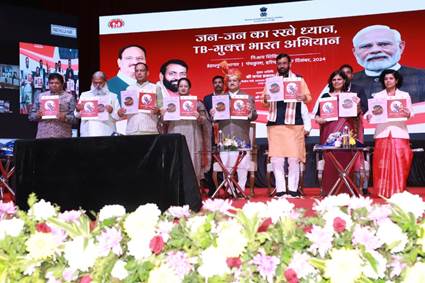
- 15 Dec 2024
In News:
- Union Health Minister Shri JP Nadda launched a 100-day intensified TB campaign in Panchkula, Haryana, aimed at reducing TB incidence and mortality. The campaign will focus on 347 high-risk districts across India.
Key Highlights:
- Campaign Goals:
- Find and treat missing TB cases, especially in high-risk groups.
- Significantly reduce TB-related deaths.
- Focus Areas:
- The campaign is part of India’s larger goal to eliminate TB before the 2030 SDG deadline.
- Strategies include early detection and rapid treatment of TB patients.
- Historical Context:
- TB was once seen as a "slow death" and patients were isolated.
- In 2018, the Prime Minister set the vision to end TB before 2030.
- Recent Government Initiatives:
- Ayushman Arogya Mandirs network of 1.7 lakh centers helps in early TB detection.
- Increased diagnostic infrastructure: Laboratories increased from 120 in 2014 to 8,293 today.
- Introduction of new drug regimens: Shorter and more effective treatments have increased the treatment success rate to 87%.
- Ni-kshay Support: Rs 3,338 crore transferred to 1.17 crore TB patients via direct benefit transfer.
- Key Achievements:
- TB decline rate in India has increased from 8.3% (2015) to 17.7% today, surpassing the global average.
- TB-related deaths have dropped by 21.4% over the past decade.
- Private Sector Involvement:
- Mandatory notification of TB patients by private practitioners has led to an 8-fold increase in TB case notifications.
- 4Ts Approach for TB Elimination: Test, Track, Treat, and Technology (use of advanced tools for diagnosis and treatment).
- New Initiatives:
- Ni-kshay Vahaan: Mobile vans to detect and treat TB patients in remote areas.
- Launch of national guidelines for a new drug-resistant TB regimen (BPaLM), which is a 4-drug combination therapy for multi-drug-resistant TB.
- Ni-kshay Poshan Yojana:
- Increase in nutritional support: Monthly support raised from Rs 500 to Rs 1000 per TB patient.
- The initiative also includes energy boosters for enhanced patient care.
- Mobile Diagnostics:
- Deployment of AI-enabled portable X-ray units and molecular tests to bring diagnostics closer to people, especially in remote areas.
- Monitoring and Data: Intensified data tracking via the Ni-kshay portal to provide timely updates to TB patients.
- Background of the Campaign:
- Part of the National TB Elimination Programme (NTEP).
- The 347 districts were selected based on indicators like death rates, presumptive TB examination rates, and incidence rates.
- Campaign Materials:
- Unveiling of Information, Education, and Communication (IEC) resources in regional languages.
- Honoring TB Champions and Ni-kshay Mitras during the event.
- Government’s Strategic Framework:
- India’s National Strategic Plan (NSP) for TB elimination (2017-2025).
- TB Harega Desh Jeetega Campaign and Pradhan Mantri TB Mukt Bharat Abhiyan.
- Tuberculosis (TB) Overview:
- TB is caused by Mycobacterium tuberculosis and primarily affects the lungs, spreading through the air.
- Mortality rate has decreased from 28 per lakh (2015) to 23 per lakh (2022).
Desert Knight Air Combat Exercise
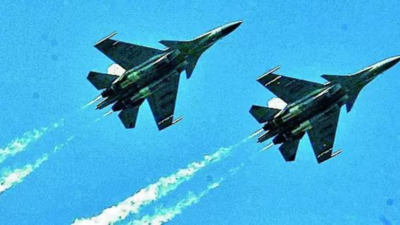
- 14 Dec 2024
In News:
India, France and UAE recently kicked off a major air combat exercise called “Desert Knight” over the Arabian Sea, strengthening trilateral defence cooperation and enhancing military interoperability amid the ongoing geopolitical churn.
Key Highlights:
- What It Is: A trilateral air combat exercise aimed at improving military interoperability and enhancing combat readiness among the participating nations.
- Nations Involved: India, France, and the UAE.
- Location: Conducted over the Arabian Sea, approximately 350-400 km southwest of Karachi.
- Aim of the Exercise:
- To strengthen trilateral defence cooperation among the three nations.
- To enhance combat skills and military interoperability of the air forces involved.
- Details of the Exercise:
- Duration: The exercise lasts for three days.
- The exercise involves large force engagement and intensive combat maneuvers in a realistic operational environment.
- Aircraft Involved:
- India: Deployed Sukhoi-30MKIs, Jaguars, IL-78 mid-air refuellers, and AEW&C (Airborne Early Warning and Control) aircraft from bases like Jamnagar.
- France: Deployed Rafale jets and other aircraft from Al Dhafra airbase.
- UAE: Deployed F-16 jets and other aircraft from Al Dhafra airbase.
Strategic Significance:
- The exercise is part of India’s efforts to build military interoperability with nations in the Persian Gulf region and strengthen defence ties with France and the UAE.
- Enhances combat readiness and strengthens cooperation against both traditional and non-traditional threats.
- Reflects the geopolitical shift and growing military cooperation in the Indo-Pacific region, especially in the context of China’s expansionist activities.
- Trilateral Framework: India, France, and the UAE launched a trilateral framework in 2022, focusing on areas like defence, technology, energy, and environment.
- Previous Exercises: In addition to Desert Knight, the countries also conducted their first trilateral maritime exercise in June 2023 to enhance cooperation in maritime security.
Broader Defence Relations:
- India-France: Long-standing strategic partnership with regular joint exercises like Shakti (army), Varuna (navy), and Garuda (air force).
- India-UAE: The defence relationship has grown significantly in recent years, with regular professional exchanges, combat exercises, and staff talks. India participates in the Desert Flag exercise at Al Dhafra airbase annually.
Switzerland Suspends MFN Clause in Tax Treaty with India
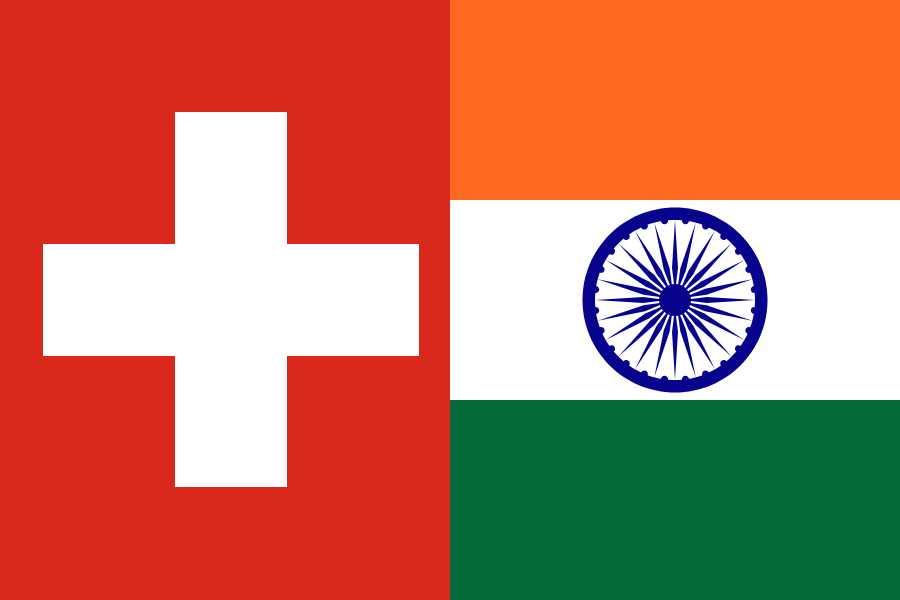
- 14 Dec 2024
In News:
Switzerland scraps MFN status to India, dividend income to face higher tax
Key Highlights:
- Reason for Suspension:
- The suspension follows a 2023 Supreme Court ruling in India, which clarified that the MFN clause in tax treaties is not automatically triggered when a country joins the OECD if the tax treaty with that country was signed before its OECD membership.
- The Court ruled that the Double Taxation Avoidance Agreement (DTAA) cannot be enforced unless it is notified under the Income-Tax Act, 1961.
- Details of the Suspension:
- Starting January 1, 2025, Switzerland will suspend the Most Favoured Nation (MFN) clause in its DTAA with India.
- The MFN clause was part of the India-Switzerland DTAA signed in 1994.
Impact of the Suspension:
- Higher Tax Liabilities for Indian Companies: Withholding tax on dividends from Switzerland will increase from 5% to 10% for Indian companies.
- Effects on Swiss Investments in India: Swiss companies will continue to face a 10% withholding tax on dividends from India, as per the India-Switzerland DTAA.
- Potential Re-evaluation of MFN Clauses by Other Countries: Other countries may reconsider how the MFN clause is applied in their tax treaties with India, following this development.
- No Change for Other Benefits: Other DTAA benefits and investments related to the European Free Trade Association (EFTA) will remain unaffected.
Most Favoured Nation (MFN) Clause Overview:
- Definition: The MFN principle ensures that favorable trading terms given by one WTO member country to another are extended to all other WTO members, promoting non-discrimination.
- Purpose: To ensure equal treatment among trading nations by preventing discrimination, and to promote fair trade and equitable market access.
- Key Features:
- Equal treatment in tariffs, quotas, and trade barriers.
- Members must extend the best terms to all other WTO members.
- Origin: The MFN principle was established after World War II as a cornerstone of the multilateral trading system under the WTO.
- Exceptions:
- Bilateral or regional trade agreements.
- Special access granted to developing countries.
- Non-WTO members (e.g., Iran, North Korea) are not bound by MFN rules.
- Removal of MFN:
- There is no formal procedure under the WTO to suspend MFN status.
- Countries are not obligated to notify the WTO when suspending or removing MFN treatment.
Recent Development:
- From January 1, 2025, Indian companies will face higher withholding tax (10%) on income sourced from Switzerland, as a result of the MFN clause suspension.
One Nation, One Election Bill
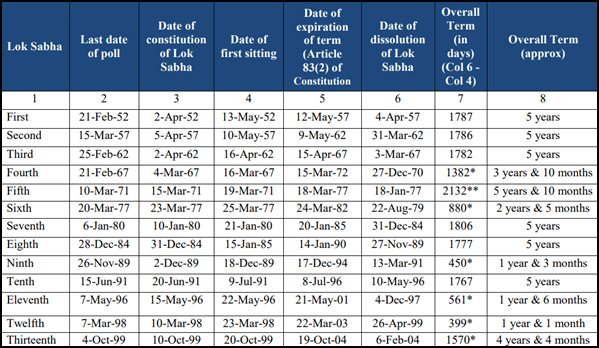
- 13 Dec 2024
In News:
The One Nation, One Election Bill has made significant progress in India, passing the Lok Sabha with 269 votes in favor and 198 votes against. The bill proposes the synchronization of elections for the Lok Sabha, State Legislative Assemblies, and local bodies (Panchayats and Municipalities), aiming to streamline the electoral process, reduce costs, and enhance governance.
Key Updates:
- The bill has been approved by the Union Cabinet and will be reviewed by a Joint Parliamentary Committee (JPC), whose report will be presented for further approval and discussion in Parliament.
- The process will unfold in two phases:
- Phase 1: Simultaneous elections for the Lok Sabha and State Legislative Assemblies.
- Phase 2: Synchronizing local body elections (Panchayats and Municipalities) within 100 days of the general elections.
Historical Context:
- 1951-1967: India previously conducted simultaneous elections for the Lok Sabha and State Assemblies until disruptions, such as premature dissolutions of assemblies, led to staggered elections after 1967.
- The One Nation One Election concept has been revived to address inefficiencies in the current system, especially the high cost of conducting frequent elections.
Advantages of the One Nation, One Election Bill:
- Cost Reduction: Synchronizing elections can significantly lower the financial burden by eliminating the need for multiple election cycles, reducing the deployment of resources like security personnel and election staff.
- Long-Term Governance Focus: Politicians can prioritize governance and policy implementation rather than election campaigning, fostering long-term stability.
- Increased Voter Turnout: Voter fatigue, caused by frequent elections, may reduce, leading to higher turnout as elections occur less often.
- Fairer Political Competition: Smaller regional parties could have a better chance to compete with larger national parties by reducing election-related costs.
- Efficient Use of Resources: Security forces and administrative resources can be deployed more effectively, avoiding the redundancy caused by multiple election cycles.
Disadvantages of the One Nation, One Election Bill:
- Synchronization Challenges: Aligning elections across a vast and diverse country like India, especially in states with unstable political situations, may prove difficult.
- Federalism Concerns: The implementation may require constitutional changes that could impact India's federal structure, potentially limiting the autonomy of states in election matters.
- Impact on Regional Issues: National issues could overshadow regional concerns, diluting the focus on state-specific matters.
- Challenges for Regional Parties: Larger national parties may dominate the electoral landscape, reducing the influence of regional parties and undermining the federal nature of the political system.
- Accountability Risks: Fixed terms without frequent elections might reduce public scrutiny of elected officials, affecting their accountability.
Constitutional Amendments Required:
The implementation of One Nation, One Election requires amendments to several key constitutional provisions:
- Article 83: Regarding the duration of the Lok Sabha, amendments are needed to synchronize the timing of dissolution.
- Article 85: Deals with the sessions and dissolution of Parliament, which needs to be aligned with the new system.
- Article 172: Pertains to the duration of State Legislatures, requiring amendments for synchronization.
- Article 174: Similar to Article 85, it governs the sessions and dissolution of State Legislatures, needing standardization.
Implementation Challenges:
- Logistical Complexity: Conducting simultaneous elections would require immense logistical coordination, including vast numbers of electronic voting machines and trained personnel.
- Political Accountability: Fixed terms may reduce the accountability that frequent elections bring, potentially leading to governance stagnation.
- Impact on Federalism: Amendments to the Constitution regarding state legislatures might face resistance from states concerned about their autonomy.
International Mountain Day 2024
- 13 Dec 2024
In News:
On 11th December 2024, the Ministry of Environment, Forest and Climate Change, in collaboration with the International Union for Conservation of Nature (IUCN) and G.B. Pant National Institute of Himalayan Environment (NIHE), hosted an event titled ‘Youth for the Himalaya: Innovate, Inspire, Impact’ to mark International Mountain Day.
Event Overview:
- The event was themed “Mountain Solutions for a Sustainable Future – Innovation, Adaptation, and Youth.”
- It emphasized the critical role of young people in addressing the environmental challenges faced by the Indian Himalayan Region (IHR).
- The aim was to showcase youth-driven innovations contributing to the region's sustainability, catalyzing active youth participation in environmental actions. This initiative aligns with the Mission LiFE (Lifestyle for Environment), launched by Prime Minister Narendra Modi, which encourages sustainable practices and collective environmental responsibility.
Key Highlights:
- Young changemakers, innovators, and stakeholders from across the country participated, including students, youth representatives, and members of the private sector, civil society, and government.
- The event highlighted discussions on sustainable solutions for the Himalayan region, integrating traditional knowledge with modern technological advancements in areas like eco-tourism, biodiversity conservation, and climate resilience.
- Short films and videos produced by NIHE and IUCN, such as "Promoting Conservation of Threatened Plant Species in the Western Himalayas" and "Himalayan Futures: Voices from the Ground," were also showcased.
International Mountain Day
- International Mountain Day, observed every year on December 11th since 2003, was established by the United Nations to raise awareness about the sustainable development of mountain regions.
- Mountains cover about one-fifth of the Earth's surface and provide essential freshwater to half of humanity, supporting agriculture, clean energy, and health.
Indian Himalayan Region (IHR)
- The IHR spans 13 Indian states and union territories, stretching approximately 2,500 kilometers from west to east. It is a biodiversity hotspot with significant ecological and cultural value. However, it faces challenges such as unsustainable development, climate change impacts, cultural erosion, and rising tourism.
Key Concerns for IHR:
- Unsustainable Development: Infrastructure projects and deforestation disrupt ecosystems.
- Climate Change: Glacial melting and rising temperatures affect water resources and increase flood risks.
- Cultural Erosion: Modernization threatens traditional practices of indigenous communities.
- Tourism Pressure: Waste generation due to growing tourism puts immense pressure on the region's fragile ecology.
Measures for Protection:
- Sustainable Tourism: Promoting eco-tourism and enforcing capacity limits to minimize environmental impact.
- Water Management: Capturing glacial meltwater for agriculture and ecosystem support.
- Disaster Preparedness: Developing disaster management strategies and early warning systems for events like landslides and floods.
- Bio-Cultural Conservation: Protecting both natural biodiversity and indigenous cultural practices through designated zones.
- Integrated Development: Establishing a "Himalayan Authority" for coordinated development in line with Sustainable Development Goals.
Railways (Amendment) Bill, 2024
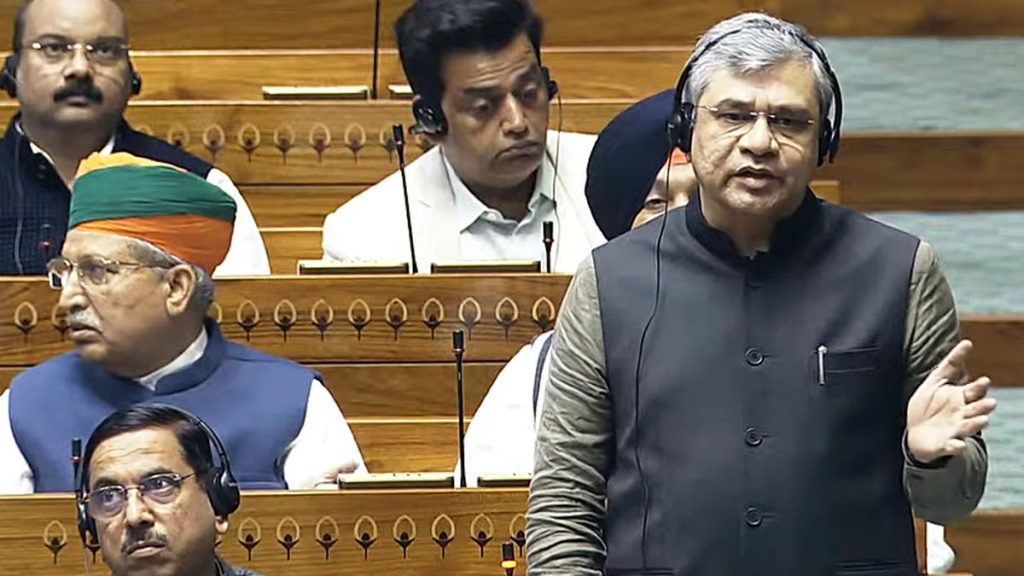
- 12 Dec 2024
In News:
The Railways (Amendment) Bill, 2024 was passed in the Lok Sabha on December 20, 2024, aiming to enhance the functioning and autonomy of Indian Railways.
Key Provisions:
- Repeal of the Indian Railway Board Act, 1905: The Bill repeals the 1905 Act and incorporates its provisions into the Railways Act, 1989, simplifying the legal framework by reducing the need to refer to two separate laws.
- Statutory Backing for Railway Board: The Bill provides statutory backing to the Railway Board, which previously lacked such a legal mandate. It grants the Union government the authority to determine the number of members, their qualifications, terms, and conditions of service.
- Decentralization of Power: The Bill aims to decentralize decision-making, granting greater autonomy to regional railway zones. This shift will allow more independence in budgeting, infrastructure projects, and recruitment, addressing long-standing calls for improved regional empowerment.
- Independent Regulator: The Bill proposes the creation of an independent regulator for overseeing tariffs, safety, and private sector participation. This idea has been supported by previous expert committees to encourage greater competition and transparency in the sector.
- Fast-Tracking Infrastructure and Services: The Bill will streamline approvals for new train services and infrastructure projects, helping meet demands from underserved regions, particularly in states like Bihar.
Objectives:
- Modernization of the Legal Framework: By incorporating the provisions of the 1905 Act into the 1989 Act, the Bill aims to simplify and modernize the legal architecture governing the railways.
- Empowerment of Railway Zones: Autonomy for railway zones is seen as a key step towards improving efficiency and accountability in operations.
- Private Sector Participation: The establishment of an independent regulator is expected to promote private participation in the railway sector, aligning with international standards.
Historical Context:
- The Indian Railways Act, 1890 established the foundations for Indian Railways as a government entity, which was further refined with the Indian Railway Board Act, 1905.
- This Bill aligns with recommendations from previous committees, including the Sreedharan Committee (2014) and the Committee on Restructuring Railways (2015), which have called for greater decentralization and autonomy for railway zones, as well as an independent regulatory body.
Challenges and Proposed Reforms:
- Financial Sustainability: The railways face challenges such as high operating costs, particularly from salaries and pensions, and losses in the passenger segment. Suggestions to improve finances include rationalizing passenger fares, enhancing freight revenue, and attracting private investment in infrastructure.
- Efficient Freight Operations: The Bill also addresses concerns about network congestion, especially for freight operations, and aims to increase the competitiveness of freight transport by improving infrastructure and reducing cross-subsidies from passenger fares.
Recommendations of various Committees on reforming the Railways
Regulatory Structure for Railway Sector
- Set up independent regulator to fix tariffs, promote competition, and protect consumer interests
Organisational structure of Indian Railways
- Corporatisation of Indian Railways
- Reorganise Railway Board to reflect a corporate business structure
- Envision the Railway Board as a policymaker alone
- Provide zones with full financial autonomy
Operations
- Separate core and non-core business (hospitals, schools, catering and security) of the Railways
- Permit private participation in some railway operations
Finances
- Clearly define social obligations and commercial business roles
- Restructure accounting procedure to reflect zone and route-wise profit and loss statements6,7,9
- Develop PPP models to attract private participation in: (i) developing and maintaining stations/ terminals, (ii) leasing of wagons, (iii) freight train operations, (iv) manufacturing of rolling stock, and (v) running non-core business operations
- Monetise railway assets
- Rationalise passenger tariffs
Regulatory Structure for Railway Sector
- Set up independent regulator to fix tariffs, promote competition, and protect consumer interests
Organisational structure of Indian Railways
- Corporatisation of Indian Railways
- Reorganise Railway Board to reflect a corporate business structure
- Envision the Railway Board as a policymaker alone
- Provide zones with full financial autonomy
Operations
- Separate core and non-core business (hospitals, schools, catering and security) of the Railways
- Permit private participation in some railway operations
Finances
- Clearly define social obligations and commercial business roles
- Restructure accounting procedure to reflect zone and route-wise profit and loss statements6,7,9
- Develop PPP models to attract private participation in: (i) developing and maintaining stations/ terminals, (ii) leasing of wagons, (iii) freight train operations, (iv) manufacturing of rolling stock, and (v) running non-core business operations
- Monetise railway assets
- Rationalise passenger tariffs
Human Rights Day 2024
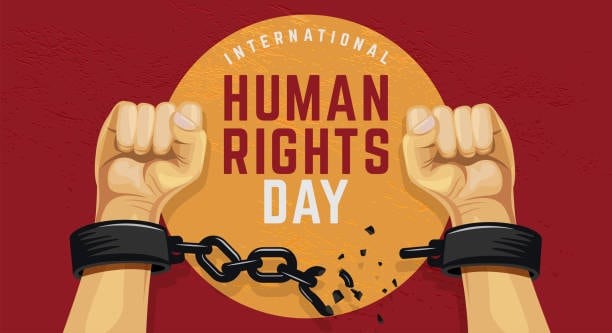
- 11 Dec 2024
In News:
Human Rights Day 2024 celebrated every year on 10th December is dedicated to promote protection of fundamental rights and freedom of all individuals.
Key Highlights:
- Purpose: Promote and protect human rights and freedoms worldwide.
- Theme (2024): “Our Rights, Our Future, Right Now” – highlights the importance of immediate action to protect and uphold human rights globally.
Historical Significance:
- Commemorates: The adoption of the Universal Declaration of Human Rights (UDHR) by the UN General Assembly in 1948.
- UN Resolution: Established by UN Resolution 423 (V) in 1950.
- First Observance: December 10, 1950.
- Father of Human Rights Day: Eleanor Roosevelt, for her pivotal role in drafting the UDHR.
Key Highlights:
- The UDHR:
- Adopted in 1948, it defines fundamental human rights for all individuals.
- Comprises 30 articles, addressing rights such as freedom, equality, and access to education, healthcare, and fair employment.
- Role of the UN: UN Human Rights Council (UNHRC): A body under the UN responsible for monitoring and promoting human rights worldwide, comprising 47 member states.
- Human Rights Day Focus in 2024:
- Emphasizes human rights education, particularly among the youth.
- Addresses emerging challenges like cybercrimes, AI impacts, and climate change.
- Reaffirms the importance of safeguarding human dignity globally.
Human Rights Declared by UDHR:
- Right to freedom and equality
- Right to life, liberty, and security
- Freedom from slavery and torture
- Right to recognition before the law
- Equal protection under the law
- Right to a fair trial
- Right to privacy and protection from attacks
- Right to work and fair employment
- Right to rest and leisure
- Right to education
- Right to an adequate standard of living
- Right to participate in government and cultural activities
National Panchayat Awards 2024
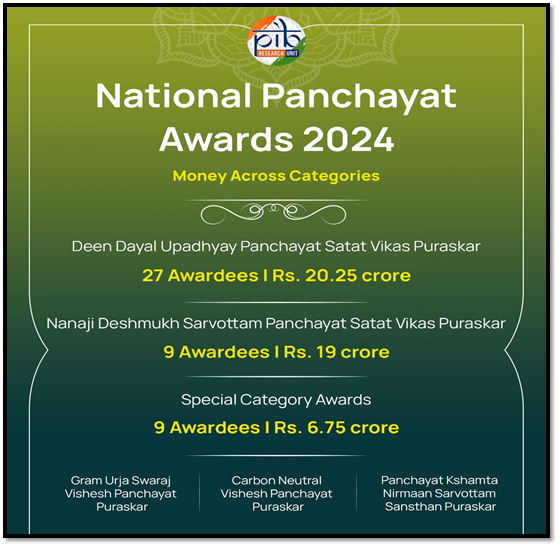
- 10 Dec 2024
In News:
The National Panchayat Awards 2024 celebrated the remarkable contributions of 45 Panchayats from across India for their role in driving sustainable and inclusive development in rural areas. The awards were presented on 11th December 2024 at Vigyan Bhawan, New Delhi, with President Smt. Droupadi Murmu and Union Minister of Panchayati Raj Shri Rajiv Ranjan Singh (Lalan Singh) presiding over the event.
Key Highlights:
- Categories of Awards: The awards focus on rural governance, social inclusion, environmental sustainability, and the achievement of the United Nations Sustainable Development Goals (SDGs) through Localization of SDGs (LSDGs).
- Deen Dayal Upadhyay Panchayat Satat Vikas Puraskar (DDUPSVP): Recognizes top-performing Gram Panchayats across 9 thematic areas like health, water, sanitation, and governance.
- Nanaji Deshmukh Sarvottam Panchayat Satat Vikas Puraskar: Awarded to the best Panchayats based on overall excellence across all LSDG themes.
- Gram Urja Swaraj Vishesh Panchayat Puraskar: Honors Panchayats for contributions to renewable energy.
- Carbon Neutral Vishesh Panchayat Puraskar: Awarded to Panchayats achieving net-zero carbon emissions.
- Panchayat Kshamta Nirmaan Sarvottam Sansthan Puraskar: Recognizes institutions supporting Panchayats in implementing LSDGs.
- Notable Achievements:
- Women’s Leadership: 42% of the award-winning Panchayats were led by women.
- States with Top Performers: States like Tripura, Odisha, and Maharashtra were prominently recognized for their achievements, especially in sustainability efforts like carbon neutrality and renewable energy adoption.
- Prize Distribution: A total of ?46 crore was awarded to the 45 winners, with funds directly transferred to their accounts.
Objectives:
The National Panchayat Awards aim to:
- Promote rural development through effective Panchayat governance.
- Encourage competition among Panchayats for improving public services and infrastructure.
- Recognize excellence in implementing sustainable development practices.
Key Themes of the Awards:
The awards are aligned with 9 LSDG themes that contribute to achieving 17 SDGs:
- Poverty-Free and Enhanced Livelihoods
- Healthy Panchayat
- Child-Friendly Panchayat
- Water-Sufficient Panchayat
- Clean and Green Panchayat
- Self-Sufficient Infrastructure
- Socially Just and Secured Panchayat
- Panchayat with Good Governance
- Women-Friendly Panchayat
The National Panchayat Awards 2024 underscore the significant role of Panchayats in shaping rural India by focusing on inclusive and sustainable development. The awards also promote the importance of localized governance in achieving SDGs, encouraging other Panchayats to adopt best practices and contribute to India's overall development goals.
Reforms in Merchant Shipping
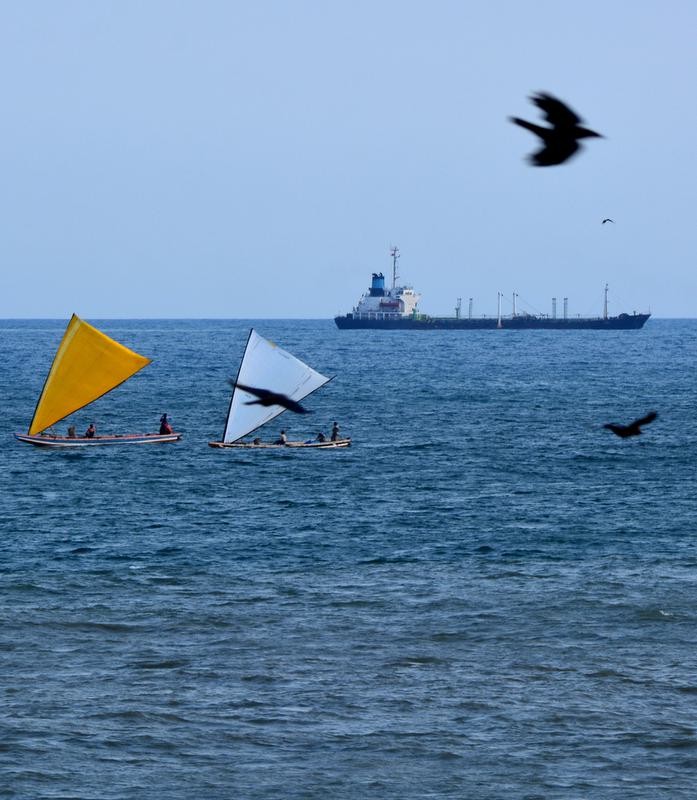
- 10 Dec 2024
In News:
The Government is preparing to introduce several significant bills aimed at driving much-needed reforms in the shipping industry. Key among them are the Merchant Shipping Bill, 2024 and the Coastal Shipping Bill, 2024, both of which promise to bring transformative changes to boost the sector.
Context and Need for Reforms:
- Outdated Framework: The Merchant Shipping Act, 1958, and the Coasting Vessels Act, 1838, fail to address the current needs of the shipping sector, particularly offshore vessels.
- Regulatory Gaps: Inadequate regulation of offshore vessels, maritime training institutions, and welfare provisions for seafarers on foreign-flagged ships.
- Global Alignment: Need to align with international maritime conventions and modernize administration for competitiveness and better governance.
- Investment and Growth: Outdated laws hinder foreign investment and ease of doing business, necessitating a regulatory overhaul.
Key Features of the Merchant Shipping Bill, 2024:
- Ease of Vessel Registration:
- Reduces ownership threshold for Indian entities from 100% to 51%, enabling NRIs, OCIs, and foreign entities to invest.
- Facilitates registration of vessels chartered by Indian entities under the "bareboat charter-cum-demise" system, promoting capital-deficient entrepreneurs.
- Temporary registration provisions for vessels destined for demolition, boosting India's ship recycling industry.
- Expansion of Vessel Scope:
- Broadens the definition of "vessel" to include all types of mechanized and non-mechanized crafts, such as submersibles, hydrofoils, and Mobile Offshore Units (MOUs).
- Ensures comprehensive regulatory oversight, particularly in the offshore sector, enhancing transparency and safety.
- Coastal Security:
- Strengthens coastal security by empowering authorities to issue instructions to all types of vessels, addressing vulnerabilities highlighted by incidents like the 26/11 Mumbai attacks.
- Marine Pollution Measures:
- Incorporates global standards like the MARPOL convention to address marine pollution.
- Introduces measures such as reducing sulphur content in marine fuel and banning single-use plastics on Indian ships.
- Launch of the ‘Swachh Sagar’ portal to ensure proper disposal of ship-generated waste.
- Seafarer Welfare:
- Expands welfare provisions to include Indian seafarers working on foreign-flagged ships, offering protections under the Maritime Labour Convention (MLC).
- Ensures better working conditions and safety standards for a growing workforce of Indian seafarers abroad.
- Maritime Training Regulations:
- Establishes a legal framework to regulate maritime training institutions, addressing the rise of unauthorized institutes post-liberalization.
- Ensures standardized, high-quality education and eliminates fraudulent practices.
Coastal Shipping Bill, 2024:
- Focus on Commercial Utilization of Coastal Waters:
- Distinguishes between the technical regulation of ships and the commercial utilization of Indian coastal waters.
- Aims to streamline licensing, operations, and coastal planning, enhancing the integration of inland and coastal shipping.
- Alignment with ‘Sagarmala’ Program: Supports the promotion of coastal shipping through better infrastructure and connectivity, in line with the government's ‘Sagarmala’ initiative, which boosts port connectivity and coastal trade.
International Conventions India Has Ratified:
- MARPOL: Focuses on preventing ship-based pollution.
- Maritime Labour Convention (MLC): Protects seafarers' rights and ensures fair working conditions.
- Bunker Convention: Addresses liability for oil pollution damage.
- Wreck Removal Convention: Mandates safe removal of shipwrecks.
- Civil Liability Convention: Establishes liability for oil pollution incidents.
Significance of the Reforms:
- Modernized Framework: Aligns India’s maritime laws with global standards for enhanced competitiveness.
- Economic Growth: Encourages foreign investment and entry into the shipping sector by removing regulatory barriers.
- Environmental Sustainability: Focus on combating marine pollution and ensuring sustainable shipping practices.
- Enhanced Safety and Security: Strengthens coastal security and ensures stringent safety regulations for vessels.
- Seafarers’ Welfare: Extends benefits and protections to Indian seafarers working globally, ensuring better working conditions.
- Maritime Education: Provides a robust regulatory framework to ensure high-quality, standardized maritime training.
RBI's Stance on De-dollarisation and Risk Diversification
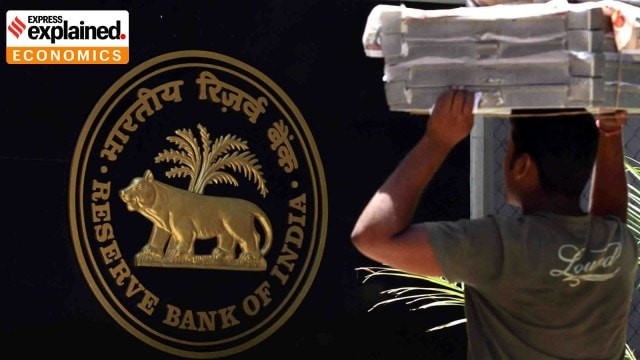
- 09 Dec 2024
In News:
- Governor Shaktikanta Das clarified that India is not pursuing "de-dollarisation," but rather aiming to diversify risk in trade. Measures like local currency trade agreements and Vostro accounts are intended to reduce reliance on the US dollar without eliminating it entirely.
- Objective: The goal is to de-risk India's trade, not to fully replace the dollar, especially amidst rising geopolitical tensions.
Key Highlights:
Vostro Accounts and Local Currency Trade:
- Vostro Accounts: These accounts, held by foreign banks in Indian rupees, facilitate transactions in local currencies, helping mitigate the risks of dollar dependency.
- International Currency Trade: By promoting trade in local currencies, the RBI seeks to reduce exposure to fluctuations in the dollar's value. However, these efforts have faced challenges due to India’s limited international presence in goods and services trade.
Gold Purchases by Central Banks:
- Surge in Gold Purchases: Global central banks, including the RBI, have significantly increased gold holdings. India added 27 tonnes in October 2024 alone, the largest increase among central banks.
- Motivations for Gold: The surge in gold buying reflects growing concerns about geopolitical risks, including the Ukraine war, and the potential for secondary sanctions. Gold is seen as a safe haven asset that diversifies reserves away from the US dollar.
Decline in Dollar Dominance:
- Global Shift: The share of the US dollar in global reserves has been gradually declining, partly due to the rise of the Chinese yuan. Central banks are increasingly turning to gold and alternative currencies as part of a diversification strategy.
- Impact on Emerging Markets: Countries like India are particularly motivated to reduce reliance on the dollar due to geopolitical tensions and economic vulnerabilities linked to the dollar’s dominance.
India’s Domestic Currency Trade Initiatives:
- Trade with Russia and UAE: India is actively exploring trade in domestic currencies with countries like Russia and the UAE to reduce dependence on the dollar. However, these efforts have faced slow uptake due to India’s trade deficit with most countries except the US.
- Challenges in Adoption: Despite efforts to internationalize the rupee, high transaction costs and lack of sufficient demand for rupee-based trade are significant barriers.
BRICS and Shared Currency Discussions:
- Geopolitical Complexity: BRICS nations, due to their geographical and economic diversity, have discussed the possibility of a shared currency, but no consensus has been reached.
- Reluctance Toward Yuan: India has resisted using the Chinese yuan for transactions, particularly for Russian oil imports, despite the yuan’s growing acceptance. This reflects India’s desire to maintain economic sovereignty and avoid over-reliance on a single currency.
Regional Implications of Dollar Volatility:
- Neighbourhood Impact: Countries like Sri Lanka, Bangladesh, Nepal, and Pakistan have experienced significant financial distress due to declining dollar reserves and surging oil prices, exacerbated by the Ukraine war.
- India’s Resilience: India’s strong dollar reserves have helped it maintain economic stability, but the country remains cautious of dollar volatility, particularly as oil prices rise.
Conclusion:
- Strategic Balance: India’s approach reflects a strategic balance of mitigating risks while ensuring global trade stability. The RBI’s emphasis on gold accumulation and pushing for rupee-based trade demonstrates a desire to reduce exposure to the dollar, but challenges like trade deficits and high transaction costs still hinder the full realization of these goals.
- Economic Sovereignty: Through these measures, India seeks to safeguard its economic sovereignty and financial stability in an increasingly unpredictable global economy.
Community and Individual Forest Rights in Anamalai Tiger Reserve (ATR)
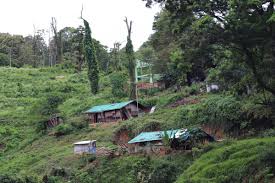
- 08 Dec 2024
In News:
- The Coimbatore District Collector, granted community and individual forest rights under the Forest Rights Act, 2006, to tribal settlements in the Anamalai Tiger Reserve (ATR) on December 6, 2024.These rights were handed over to three tribal settlements and 14 families at a function in Coimbatore.
Key Highlights:
- Community Forest Rights:
- Three tribal settlements in ATR—Nagaroothu I, Nagaroothu II, and Chinnarpathi—were granted community rights.
- These rights allow the settlements to collect forest produce excluding timber, such as mango, amla, honey, tamarind, and grass for making brooms.
- Individual Forest Rights:
- Individual rights were granted to 14 families from the Old Sarkarpathy tribal settlement.
- The families had requested these rights for traditional cultivation practices passed down by their ancestors.
- The individual rights were approved after the recommendation of a sub-divisional committee and scrutiny by a district-level committee.
- About the Forest Rights Act (FRA), 2006:
- Purpose: The FRA was enacted to address historical injustices faced by forest-dwelling communities and ensure their livelihood and food security.
- Key Provisions:
- Individual Rights: Self-cultivation, habitation, and in-situ rehabilitation.
- Community Rights: Access to grazing, fishing, water bodies in forests, and protection of traditional knowledge and customary rights.
- Eligibility: Rights can be claimed by any community or individual who has lived in the forest for at least three generations (75 years) before December 13, 2005.
- Critical Wildlife Habitats: The Act mandates that critical wildlife habitats in national parks and sanctuaries remain inviolate for wildlife conservation.
- Authorities Involved in Vesting Forest Rights:
- Gram Sabha: Initiates the process for determining the nature and extent of rights.
- Sub-Divisional Level Committee: Examines resolutions passed by the Gram Sabha.
- District Level Committee: Grants final approval for forest rights.
- Challenges with Forest Rights Implementation:
- The Xaxa Committee pointed out several challenges in the implementation of the FRA, such as:
- Arbitrary rejection of claims.
- Lack of deadlines for claims processing.
- Unaddressed rights of communities displaced by development projects.
- The Xaxa Committee pointed out several challenges in the implementation of the FRA, such as:
- About Anamalai Tiger Reserve:
- Located in the Anamalai Hills of Pollachi and Coimbatore District, Tamil Nadu, at an altitude of 1,400 meters.
- Established as a tiger reserve in 2007, it is surrounded by multiple protected areas like the Parambikulam Tiger Reserve, Chinnar Wildlife Sanctuary, and Eravikulam National Park.
- Biodiversity in Anamalai Tiger Reserve:
- Habitats: The reserve contains wet evergreen forests, semi-evergreen forests, moist deciduous forests, dry deciduous forests, and unique habitats like montane grasslands and marshy grasslands.
- Flora: The reserve is home to around 2,500 species of angiosperms, including species like balsam, orchids, and wild relatives of cultivated crops such as mango, jackfruit, cardamom, and pepper.
- Fauna: It supports various wildlife species, including tigers, Asiatic elephants, sambars, spotted deer, leopards, jackals, and jungle cats.
Development Initiatives for North East Region (NER)
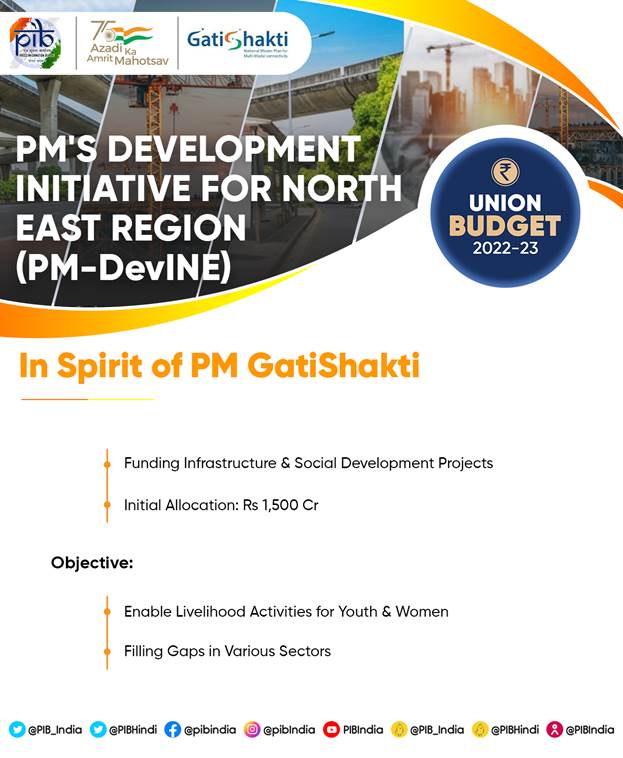
- 07 Dec 2024
In News:
Prime Minister’s Development Initiative for North East Region (PM-DevINE) was announced as a new Central Sector scheme, with 100% Central funding in the Union Budget 2022-23 with initial outlay of Rs.1500 crore.
PM-DevINE Scheme:
- Launched in 2022 as a Central Sector scheme, with 100% Central funding.
- Initial outlay: Rs. 1500 crore in the Union Budget 2022-23.
- Total outlay: Rs. 6600 crore for the period from FY 2022-23 to FY 2025-2026, approved by the Union Cabinet on 12 October 2022.
- Objectives:
- Fund infrastructure projects in the spirit of PM Gati Shakti.
- Support social development projects tailored to the felt needs of the NER.
- Enable livelihood opportunities for youth and women.
- Address development gaps in various sectors.
- 35 projects worth Rs. 4857.11 crore have been sanctioned under the scheme up to 30 November 2024, including 7 projects from the Union Budget 2022-23.
Industrialization Initiatives:
- North East Industrial Development Scheme (NEIDS):
- Launched on 1 April 2017, ended on 31 March 2022.
- Aimed at promoting industrialization in the NER.
- UNNATI Scheme:
- Launched on 9 March 2024 for enhancing regional infrastructure and promoting industrial growth.
- Provides specific incentives to industries, including:
- Capital Investment Incentive.
- Capital Interest Subvention.
- Manufacturing & Services Linked Incentive.
Budgetary Allocation for NER Development:
- Non-exempt Union Ministries/Departments are mandated to allocate at least 10% of their annual Gross Budgetary Allocation towards NER development.
- Between 2019-20 and 2023-24, these Ministries/Departments have incurred Rs. 3,53,412 crore towards the development of NER.
Role of State Governments and Central Support:The Government of India supplements state efforts with various schemes to promote industrialization and infrastructure development in the NER.
The PM-DevINE scheme, along with initiatives like UNNATI and the allocation of substantial funds by the central government, aims to accelerate the holistic development of NER. These efforts focus on infrastructure, social development, and industrialization, with specific emphasis on youth and women empowerment, ensuring long-term growth and prosperity for the region.
China Plus OneStrategy
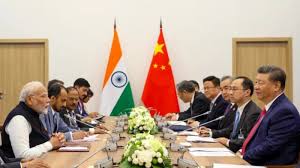
- 07 Dec 2024
In News:
India had ‘limited success’ in capturing ‘China Plus One’ opportunity.
Limited Success in ‘China Plus One’ Strategy:
- India has had limited success in attracting multinational companies looking to diversify their supply chains under the ‘China Plus One’ strategy, aimed at reducing dependence on China.
- Vietnam, Thailand, Cambodia, and Malaysia have been more successful in benefiting from this shift due to factors like lower labor costs, simplified tax laws, and proactive Free Trade Agreements (FTAs).
Geopolitical Context - US-China Trade Conflict:
- The fresh US-China trade conflict involves tit-for-tat restrictions, with the US imposing export controls on Chinese high-tech goods and China retaliating by banning key materials.
- India's Position: As a "connecting economy" not directly aligned with the US or China, India stands to benefit from trade diversions arising from this conflict.
Opportunities for India Amid Trade Diversion:
- NITI Aayog CEO BVR Subrahmanyam highlighted opportunities arising from trade diversion, particularly due to US trade policies under President-elect Donald Trump, which could potentially create an economic boom for India.
- India has opportunities to capture a larger share of the global trade, especially in sectors where it currently holds a small market share (less than 1% of world trade in many areas).
Trade Policy Challenges:
- Steel Import Duty Proposal: NITI Aayog Vice Chairperson cautioned against imposing high duties on steel imports, arguing that it could reduce India’s competitiveness and lead to negative consequences for domestic industries reliant on steel.
- The global steel market has been affected by oversupply from China, with India’s iron and steel exports experiencing a sharp decline in Q1 FY25 due to weak domestic demand.
Impact of US Tariffs:
- A general 10% tariff on all imports by the US would not have a major negative impact on India.
- However, a 60% tariff on China could open significant opportunities for India, especially in sectors where it competes directly with China. There might be short-term shocks but long-term benefits.
Ongoing Trade Fragmentation:
- The report noted that trade fragmentation is driven by strict export controls on Chinese goods, implemented by the US to curb China’s growth, particularly in high-tech sectors.
Sectoral Competitiveness:
- While China remains India's key competitor across most export sectors, countries like Brazil, Indonesia, and South Africa generally lag behind India.
- Malaysia and Thailand outperform India in select sectors such as electrical machinery.
Challenges in the EU Market - Carbon Border Adjustment Mechanism (CBAM):
- Iron and steel industry facehigh exposure under the CBAM for EU exports, with tariffs potentially rising by 20-35% due to carbon emissions-related regulations.
- Indian firms could experience higher compliance costs due to the requirement for detailed emissions reporting, impacting competitiveness in the European market.
PMeVIDYA DTH 24x7 Channel No. 31
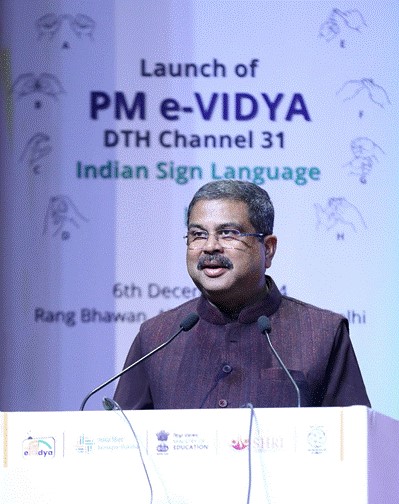
- 07 Dec 2024
In News:
Union Minister for Education, launched the PMeVIDYA DTH 24x7 Channel No. 31 dedicated to Indian Sign Language (ISL) on December 6, 2024, in New Delhi.
Channel Purpose and Vision:
- Objective: To bridge the communication gap between the hearing-impaired and hearing populations by promoting ISL.
- Significance: Channel 31 aims to unlock talent and ensure equal opportunities for all, making society more inclusive and progressive.
- ISL's Role: Pradhan emphasized the importance of alternative communication methods like ISL, which ensures that individuals with hearing impairments have equal access to education, employment, and societal participation.
Government's Focus on Inclusivity:
- Legal Framework: Pradhan highlighted the expansion of recognized disabilities from 7 to 21, making the legal framework more comprehensive.
- National Education Policy (NEP) 2020: The policy focuses on inclusive education, with particular attention to Children with Special Needs (CwSN). The NEP promotes the standardization of ISL and its inclusion in educational curricula.
- Employment and Cultural Expression: ISL is not only essential for communication but also contributes to cultural expressions like dance and drama. Pradhan emphasized that learning ISL would open employment opportunities and allow individuals to express themselves fully.
Importance of Channel 31:
- The launch of Channel 31 aligns with India’s commitment to ensuring equal rights and access to education, as enshrined in the Constitution.
- Pradhan urged for widespread adoption of ISL, ensuring that more people learn the language to better support the hearing-impaired community.
PM e-Vidya Initiative:
- Launch Date: PM e-Vidya was launched as part of the Atmanirbhar Bharat Abhiyaan on May 17, 2020, to bridge the digital divide and ensure inclusive education.
- Key Components:
- DIKSHA: A national platform providing e-content for all grades.
- DTH TV Channels: Initially started with 12 channels, now expanded to 200, offering supplementary education in multiple languages.
- SWAYAM: A platform for online courses and MOOCs for both school and higher education.
- Community Radio & Podcasts: These platforms are used for wider educational outreach, especially in rural and remote areas.
- e-Content for Teachers: Interactive videos and resources aimed at enhancing teacher education.
Channel Content:
- Channel 31 will provide 24x7 educational content for children with hearing impairments, teachers, and other stakeholders.
- The content will include school curricula, career guidance, skill training, mental health support, and promotion of ISL as a subject.
- The content will be available on YouTube, increasing its reach and accessibility.
BharatiyaVayuyanVidheyak Bill, 2024
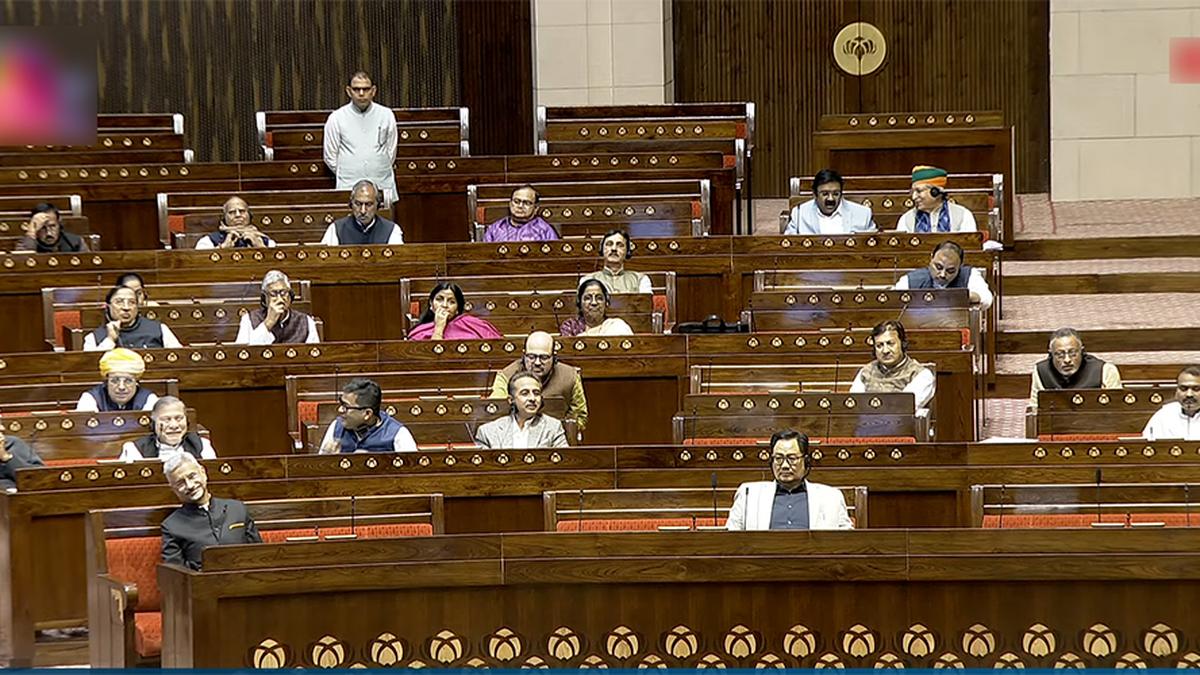
- 06 Dec 2024
In News:
In a significant move, the Indian Parliament passed the BharatiyaVayuyanVidheyak Bill, 2024 on December 5, 2024, bringing much-needed reforms to the aviation sector. The Bill, which replaces the Aircraft Act of 1934, aims to streamline aviation regulations and improve the ease of doing business in the industry.
Key Highlights of the BharatiyaVayuyanVidheyak Bill, 2024:
- Single-Window Clearance for Aviation Personnel: One of the major changes is the transfer of responsibility for the Radio Telephone Operator Restricted (RTR) certification from the Department of Telecom (DoT) to the Directorate General of Civil Aviation (DGCA). This move consolidates the certification process under a single authority, making it easier for aviation personnel like pilots, engineers, and flight dispatchers to obtain their licenses.
- Regulation of Aircraft Design: The Bill not only retains provisions for regulating aircraft manufacturing, maintenance, and repair, but also introduces new provisions to regulate aircraft design and the places where aircraft are designed.
- Enhanced Penalties for Violations: The Bill specifies severe penalties for violations, such as dangerous flying, carrying prohibited items (like arms or explosives), or littering near airports. Offenders may face imprisonment up to three years, fines up to ?1 crore, or both.
- Introduction of Second Appeal Mechanism: For the first time, the Bill introduces a second appeal process against decisions of regulatory bodies like the DGCA and BCAS, ensuring further scrutiny of decisions related to penalties.
- Improved Licensing Process: The shift of the RTR certification process from the DoT to DGCA aims to curb allegations of corruption associated with the previous system, where candidates often had to pay bribes to clear exams.
Organizational Setup and Authorities:
The Bill outlines the establishment of three key authorities under the Ministry of Civil Aviation:
- DGCA: Responsible for civil aviation safety, licensing, and ensuring compliance with international standards.
- BCAS: Ensures aviation security and develops relevant security measures.
- AAIB: Investigates aviation accidents and incidents.
The central government retains supervision over these bodies, with the power to modify or review their orders.
Criticisms and Concerns:
- Lack of Autonomy for DGCA: The DGCA, unlike independent regulators in other sectors (such as telecom or insurance), operates under direct government supervision. The lack of clear qualifications, selection process, and tenure for the DGCA Director General has raised concerns about the regulator's independence.
- Unilateral Appointment of Arbitrators: The Bill empowers the government to unilaterally appoint an arbitrator in certain cases, which has been criticized for potentially violating the right to equality under Article 14 of the Constitution. The Supreme Court has previously ruled that such unilateral appointments may be unconstitutional.
- Discretionary Criminal Penalties: The central government is granted the discretion to impose criminal penalties for rule violations, which some argue could undermine the principle of separation of powers, as it is the legislature's role to define criminal offenses and penalties.
- Exclusionary Hindi Title: Some critics argue that the Hindi title of the Bill may alienate non-Hindi-speaking populations, which make up a significant portion of India’s demographic.
India and Slovenia Announce Five-Year Collaboration Plan
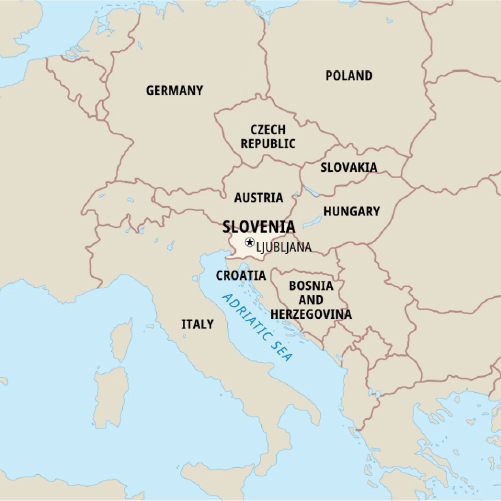
- 06 Dec 2024
In News:
India and Slovenia have announced a five-year scientific collaboration plan (2024-2029) to deepen ties in research and technology. The Programme of Cooperation (PoC) was finalized during a meeting between Dr. Jitendra Singh (Indian Minister for Science and Technology) and Dr. Igor Papi? (Slovenian Minister for Higher Education, Science, and Innovation) on December 5, 2024.
Key Highlights:
- Joint Research Focus: The collaboration will focus on hydrogen technologies, sustainable innovation, AI, renewable energy, and smart cities.
- Over 20 Successful Projects: More than 20 joint initiatives in sectors like health, AI, and energy have already been implemented.
- Future Areas of Collaboration: New research projects will be launched, further strengthening academic exchanges and scientific networks between the countries.
- Hydrogen Technologies: Both ministers emphasized hydrogen's role in global energy sustainability, marking it as a critical area for future research.
- Historical Partnership: This builds on a partnership dating back to a 1995 agreement, with initiatives like the Joint Working Group on Scientific and Technological Cooperation.
What is the Programme of Cooperation (PoC)?
- The Programme of Cooperation (PoC) is a formal agreement between two countries designed to enhance collaboration in specific sectors, such as science, technology, and innovation.
- In the case of India and Slovenia, the PoC for the period 2024–2029 aims to promote joint research efforts, academic exchanges, and partnerships in emerging fields like hydrogen technologies, sustainable innovation, and other transformative areas.
- The PoC serves as a structured framework for long-term cooperation, enabling both nations to develop networks among scientists and researchers while addressing global challenges through collaborative innovation.
Donald Trump's Threat on BRICS and US Dollar
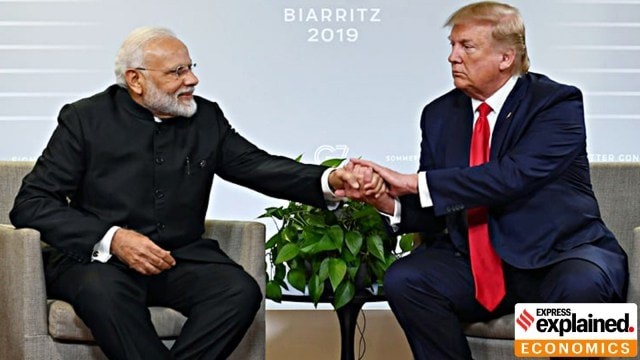
- 05 Dec 2024
In News:
- US President-elect Donald Trump threatens BRICS countries (Brazil, Russia, India, China, South Africa) with 100% import tariffs if they create a new currency or support an alternative to the US dollar as the global reserve currency.
- Trump emphasizes that attempts to undermine the US dollar’s dominance will face economic retaliation, asserting the US economy won’t tolerate such moves.
Background
- Weaponization of the Dollar: The US has increasingly used its financial influence to impose sanctions (e.g., Russia, Iran) and cut off countries from systems like SWIFT (Society for Worldwide Interbank Financial Telecommunication).
- Concerns: Countries are concerned about their vulnerability to US monetary policies, which can have global impacts (e.g., rising US interest rates causing economic instability in other countries).
Efforts to Reduce Dependence on the US Dollar
- BRICS Countries’ Initiatives:
- Russian President Putin criticizes the weaponization of the dollar.
- Brazil's President Lula advocates for a new BRICS currency to increase payment options and reduce vulnerabilities.
- India's Steps:
- The Reserve Bank of India (RBI) allows invoicing and payments in Indian rupees for international trade (since 2022), particularly with Russia.
- Prime Minister Modi supports increasing financial integration and cross-border trade in local currencies within BRICS.
- External Affairs Minister Jaishankar emphasizes the importance of mutual trade settlements in national currencies.
- China-Russia Trade: Over 90% of trade between Russia and China is settled in rubles and yuan due to their more balanced trade relations.
Internationalization of the Indian Rupee
- RBI's Role:
- In July 2022, RBI allowed export/import settlements in rupees, starting with Russia in December 2022.
- More than 19 countries, including the UK and UAE, have agreed to settle trade in rupees.
- Challenges:
- The Indian rupee currently accounts for only 1.6% of global forex turnover.
- India’s trade imbalance with Russia limits the effective use of rupee reserves.
- Indian banks are cautious due to the risk of US sanctions.
Global Trends in Currency Diversification
- Multipolarity in Finance: Emerging economies like China, India, and Brazil are advocating for a more decentralized financial system, moving away from US dominance.
- Declining Dollar Share: The US dollar’s share of global reserves is gradually decreasing, with non-traditional currencies like the Chinese yuan gaining ground.
Risks of Moving Away from the US Dollar
- Chinese Dominance: Concerns about increasing Chinese economic influence, especially within BRICS, as China pushes for more use of the yuan in trade.
- Liquidity and Volatility Issues: Alternatives to the dollar may face challenges like lower liquidity and increased exchange rate volatility.
- Implementation Challenges: Countries, especially those with trade imbalances, find it difficult to adopt local currencies for international trade.
Potential Impact of 100% US Tariff on BRICS Imports
- Global Trade Dynamics: A blanket tariff would likely encourage deeper intra-BRICS trade and accelerate the move towards de-dollarization.
- Impact on the US: Higher import costs for American consumers and potential trade diversification to third countries could hurt the US economy without revitalizing domestic manufacturing.
- Retaliation: BRICS countries might retaliate with tariffs on US goods, escalating trade tensions.
India’s Strategic Approach
- Diplomatic Engagement: India should clarify to the US that diversifying trade mechanisms is not anti-American but seeks financial stability and multipolarity.
- Leadership Role in BRICS: India should support financial reforms within BRICS that align with its interests while maintaining strong ties with the US.
- Promotion of Digital Currency: India should accelerate its Central Bank Digital Currency (CBDC) and strengthen international platforms like UPI to enhance its global financial presence.
International Debt Report 2024
- 05 Dec 2024
In News:
Recently released, World Bank’s "International Debt Report 2024" highlights a worsening debt crisis for developing nations, with 2023 marking the highest debt servicing levels in two decades, driven by rising interest rates and economic challenges.
Key Highlights:
Rising Debt Levels:
- Total external debt of low- and middle-income countries (LMICs) reached $8.8 trillion by the end of 2023, an 8% increase since 2020.
- For IDA-eligible countries (those receiving concessional loans from the World Bank), external debt rose by 18%, reaching $1.1 trillion.
Debt Servicing Costs:
- Developing nations paid a record $1.4 trillion in debt servicing costs (principal and interest) in 2023.
- Interest payments surged by 33%, totaling $406 billion, putting immense pressure on national budgets, especially in critical sectors like health, education, and environmental sustainability.
Interest Rate Increases:
- Interest rates on loans from official creditors doubled to 4% in 2023.
- Rates from private creditors rose to 6%, the highest in 15 years, exacerbating the financial burden on developing countries.
Impact on IDA-Eligible Countries:
- IDA countries faced severe financial strain, paying $96.2 billion in debt servicing, including $34.6 billion in record-high interest costs (four times higher than a decade ago).
- On average, 6% of their export earnings were allocated to debt payments, with some countries dedicating up to 38%.
Role of Creditors:
- Private creditors reduced lending, leading to more debt-servicing payments than new loans.
- In contrast, multilateral lenders like the World Bank provided additional support, with the World Bank contributing $28.1 billion.
- Multilateral institutions have emerged as crucial support systems, becoming "lenders of last resort" for poor economies.
Debt Data Transparency:
- Efforts to improve debt transparency led to nearly 70% of IDA-eligible economies publishing accessible public-debt data in 2023, a 20-point increase since 2020.
- Accurate debt data can reduce corruption and promote sustainable investment.
Global Financial Reforms:
- There is a growing call for global financial reforms to address the systemic challenges of developing nations facing rising debt burdens.
- Proposed measures include increased concessional financing, improved restructuring mechanisms, and the establishment of a Global Debt Authority for better debt management.
Impact on Climate and Development Goals:
- Debt servicing has become a larger financial burden than climate initiatives in many countries, with developing nations spending more on debt servicing than climate goals (2.4% of GDP vs. 2.1% for climate investments).
- To meet climate commitments under the Paris Agreement, climate investments would need to rise to 6.9% of GDP by 2030.
Debt Relief Initiatives:
- Programs like the Heavily Indebted Poor Countries (HIPC) Initiative and the Multilateral Debt Relief Initiative (MDRI) provide debt relief to the world’s poorest nations, helping them meet Sustainable Development Goals (SDGs).
- For instance, Somalia saved $4.5 billion in debt service after completing the HIPC program in December 2023.
Global Sovereign Debt Roundtable (GSDR):
- The GSDR brings together debtor nations and creditors (both official and private) to improve debt sustainability and address restructuring challenges.
- Co-chaired by the IMF, World Bank, and G20, the forum aims to find coordinated solutions for sovereign debt issues.
Overview of Global Plastic Treaty Negotiations

- 05 Dec 2024
In News:
The recent negotiations for a global treaty aimed at curbing plastic pollution, held in Busan, South Korea, concluded without reaching a legally binding agreement. This marked the fifth round of discussions since the United Nations Environment Assembly (UNEA) initiated the process in March 2022, with the goal of finalizing a treaty by the end of 2024. The failure to adopt a treaty was primarily due to disagreements over production cap goals and the elimination of specific plastic chemicals and products.
Key Points of Dispute
- Production Cap Goals: A coalition of over 100 countries, including many from Africa, Latin America, and the European Union, pushed for clear production cap goals in the treaty. They argued that such measures are essential for effective regulation of plastic pollution.
- Opposition from Oil-Producing Nations: Conversely, a group of “like-minded countries” such as Saudi Arabia, Kuwait, Russia, and Iran opposed these provisions. They contended that regulating production cuts exceeded the original mandate set by UNEA and could lead to trade restrictions disguised as environmental measures. India and China aligned with this coalition, emphasizing their concerns regarding economic impacts.
Draft Treaty Highlights
Despite the failure to finalize an agreement, discussions produced a draft text that included both consensus points and contentious issues:
- Consensus Points:
- Proposals for banning open dumping and burning of plastics.
- Definitions for various plastic types were suggested but lacked clarity on contentious terms like microplastics.
- Contentious Issues:
-
- The draft did not adequately address definitions for microplastics or recycling standards.
- References to single-use plastics were included but faced pushback from certain nations.
India’s Position
India articulated its stance focusing on several key areas:
- Development Rights: Emphasized the need for recognizing varying responsibilities among countries in managing plastic pollution while considering their developmental rights.
- Technical and Financial Support: Advocated for provisions ensuring technical assistance and financial support for developing nations to manage plastic waste effectively.
- Opposition to Production Caps: India opposed any articles that would impose caps on polymer production, arguing that such measures were not directly linked to reducing plastic pollution.
Future Steps
The negotiations will continue with plans to reconvene in 2025. In the meantime, global plastic production is projected to rise significantly, potentially tripling by 2050 if no urgent action is taken. The ongoing dialogue will need to address both environmental concerns and developmental needs to create a balanced approach toward managing plastic pollution globally.
Global Context and Initiatives
The need for a global treaty is underscored by alarming statistics:
- Over 462 million tons of plastic are produced annually, with a significant portion contributing to pollution.
- Microplastics have infiltrated ecosystems worldwide, affecting biodiversity and human health.
Countries like Rwanda and Austria have implemented successful measures to reduce plastic waste, serving as models for global efforts. Initiatives such as the UNDP Plastic Waste Management Program in India aim to enhance waste management practices while addressing environmental impacts.
Places of Worship (Special Provisions) Act, 1991
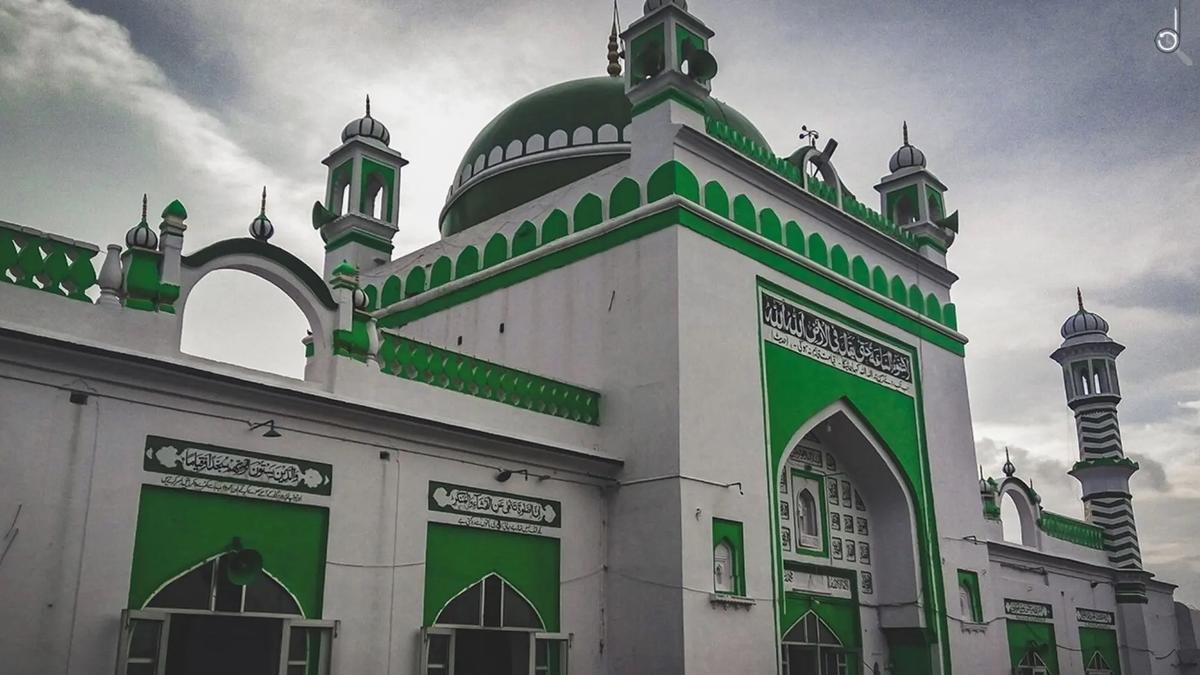
- 04 Dec 2024
In News:
The Places of Worship (Special Provisions) Act, 1991, is once again in focus, albeit in a context in which its objectives are being ignored. Civil suits questioning the religious character of mosques at Varanasi and Mathura are progressing apace. These developments show that legislation freezing the status of places of worship is inadequate to stop Hindu claimants from making determined legal efforts to achieve their goal of replacing them with temples.
Places of Worship (Special Provisions) Act, 1991:
- Objective: To preserve the religious character of places of worship as they existed on August 15, 1947, and prevent changes in religious identity.
- Key Provisions:
- Section 3: Prohibits conversion of a place of worship from one religion to another.
- Section 4(1): Ensures the religious character remains unchanged from August 15, 1947.
- Section 4(2): Terminates ongoing or future legal proceedings seeking to alter the religious character of a place of worship.
- Exemptions:
- Ayodhya dispute: Exempted, allowing ongoing litigation.
- Ancient monuments & archaeological sites: Not covered by the Act.
- Already settled disputes or those agreed upon before the Act came into force.
- Penalties: Violators can face up to 3 years of imprisonment or fines.
- Criticism: The Act has been challenged for limiting judicial review, imposing a retrospective cutoff date, and restricting religious rights.
Recent Legal Disputes:
- Gyanvapi Mosque (Varanasi):
- Claim: Hindu worshippers assert the right to worship deities (e.g., Ma Sringar Gauri, Lord Vishweshwar) within the mosque premises.
- Legal Basis: Claim that the mosque was built over an ancient Hindu temple.
- Court's Ruling: The court allows the case to proceed, stating that the aim is to assert worship rights, not change the mosque’s status.
- Archaeological Survey: ASI report confirms the existence of a temple before the mosque’s construction.
- Key Legal Outcome: The Places of Worship Act does not bar these suits as they aim to ascertain the religious character of the site, not alter it.
- Shahi Idgah Mosque (Mathura):
- Claim: Hindu groups assert the mosque was built over Lord Krishna’s birthplace.
- Historical Context: The dispute was settled by a compromise in 1968, which was implemented in 1974, where part of the land was given to the mosque.
- Current Legal Dispute: New suits challenge the 1968 agreement as ‘fraudulent’ and seek the entire land to be transferred to the deity.
- Court's Ruling: The Act is not applicable as the 1968 agreement predates the 1991 Act, and the dispute pertains to the compromise, not the religious character.
- Shahi Jama Masjid (Sambhal, Uttar Pradesh):
- Claim: Allegation that the mosque was built over a Hindu temple (Hari Har Mandir).
- Survey Request: Petitioners seek a survey to verify the site’s historical and religious character.
- Legal Context: The mosque is a protected monument under the Ancient Monuments Preservation Act, 1904.
Key Legal Interpretations:
- Court’s Role: Courts have ruled that the Places of Worship Act does not prohibit suits related to the religious character of a site if they are aimed at determining, not altering, that character.
- Interpretation of ‘Religious Character’: The Allahabad High Court stated that a structure can’t have dual religious character (both Hindu and Muslim), and the religious character of a place must be determined through evidence.
Political and Social Implications:
- Ongoing Controversy: The Gyanvapi and Mathura mosque disputes continue to fuel political and religious debates, as Hindu organizations seek to assert their claims, while mosque committees and Muslim groups resist changes.
- Public and Legal Attention: The legal and political landscape surrounding the Places of Worship Act remains contentious, with several legal suits challenging its applicability.
International Day of Persons with Disabilities 2024
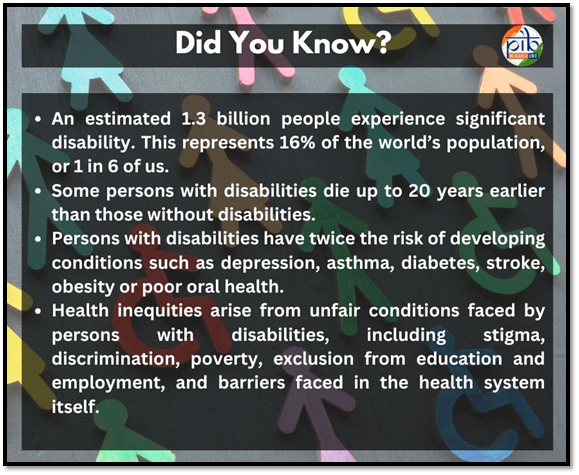
- 03 Dec 2024
In News:
- The International Day of Persons with Disabilities (IDPD), observed annually on December 3, celebrates the resilience, contributions, and leadership of persons with disabilities (PwDs) worldwide.
- Theme: “Amplifying the leadership of persons with disabilities for an inclusive and sustainable future”
History
- Proclamation: Established by the United Nations General Assembly in 1992 to promote the rights and well-being of persons with disabilities (PwDs).
- Convention on the Rights of Persons with Disabilities (CRPD): Adopted in 2006, further advanced the rights and well-being of PwDs and supports the 2030 Agenda for Sustainable Development.
Initiatives
Department of Empowerment of Persons with Disabilities
- In order to give focused attention to policy issues and meaningful thrust to the activities aimed at the welfare and empowerment of Persons with Disabilities (PwDs), a separate Department of Disability Affairs was carved out of the Ministry of Social Justice and Empowerment on May 12, 2012.
- The Department was renamed the Department of Empowerment of Persons with Disabilities on December 8, 2014.
- The Department acts as a nodal agency for matters pertaining to disability and persons with disabilities, including effecting closer coordination among different stakeholders: related Central Ministries, State/UT Governments, NGOs, etc., in matters pertaining to disability.
Accessible India Campaign
- The Accessible India Campaign (Sugamya Bharat Abhiyan), launched on December 3, 2015 aims to achieve universal accessibility for Persons with Disabilities (PwDs) across India.
- The key focus areas include improving Built Environment Accessibility in public spaces, enhancing Transportation Accessibility for independent mobility, creating an accessible Information and Communication ecosystem, and expanding Sign Language Access through interpreter training and better media support.
Deendayal Divyangjan Rehabilitation Scheme (DDRS)
- DDRS is a central sector scheme to provide grant-in-aid to non-governmental organizations (NGOs) for projects relating to the rehabilitation of persons with disabilities aimed at enabling persons with disabilities to reach and maintain their optimal, physical, sensory, intellectual, psychiatric, or socio-functional levels.
District Disability Rehabilitation Centre (DDRC)
- The District Disability Rehabilitation Centre (DDRC) aims to address the needs of persons with disabilities through a multifaceted approach.
- Its objectives include early identification and intervention, raising awareness, and assessing the need for assistive devices along with their provision and fitment, arrangement of loans for self-employment and more. Additionally, it acts as an outreach center for services provided by National Institutes and works to promote a barrier-free environment for individuals with disabilities.
Assistance to Persons with Disabilities for Purchase/Fitting of Aids/ Appliances (ADIP) Scheme.
- The main objective of the Scheme is to provide grants-in-aid to the various implementing agencies (National Institutes/Composite Regional Centers/Artificial Limbs Manufacturing Corporation of India.
Schemes For Implementation Of Rights of Persons With Disabilities Act 2016 (SIPDA)
- The Scheme for Implementation of the Rights of Persons with Disabilities Act, 2016 (SIPDA) is a comprehensive "Central Sector Scheme" that encompasses 10 sub-schemes following its revision during the Expenditure Finance Committee (EFC) meeting on 11th August 2021.
- This revised scheme, approved by the Hon'ble Finance Minister, is designed to operate from 2021–22 to 2025–26.
Divya Kala Mela
- The Divya Kala Mela is a national-level fair dedicated to Divyangjan and represents a significant milestone in India’s journey toward inclusivity and empowerment of the Divyangjan, or differently-abled individuals.
PM-DAKSH
- PM-DAKSH (Pradhan Mantri DakshtaAurKushaltaSampannHitgrahi) Yojana is a one-stop destination for Persons with Disabilities (PwDs), skill training organizations, and employers across India to be a part of the National Action Plan for Skill Development of Persons with Disabilities implemented by the Department of Empowerment of Persons with Disabilities (DEPwD). Under this portal, there are two modules:
- Divyangjan Kaushal Vikas: Skill training is conducted for PwDs through the portal across the country.
- Divyangjan Rozgar Setu: The platform aims to act as a bridge between PwDs and employers having jobs for PwDs. The platform provides geo-tagged based information on employment/earning opportunities within private companies as well as PwDs across India.
National Policy on Female Labour Force Participation (FLFP)
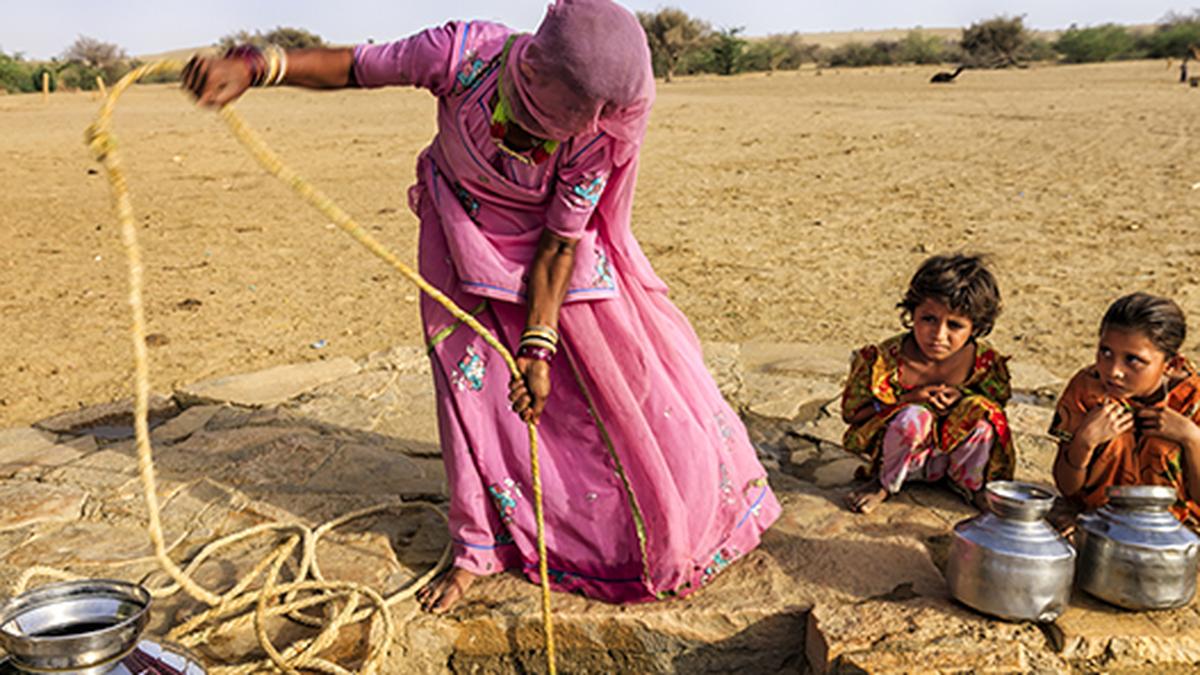
- 02 Dec 2024
In News:
- India is working on a national policy to enhance female labour force participation (FLFP), focusing on creating a supportive care economy structure.
- The policy is being developed by an inter-ministerial team involving the Ministries of Skill Development, Labour, Rural Development, and Women and Child Development.
- Goal: To reduce barriers for women, especially related to caregiving responsibilities, and increase their participation in the workforce.
Key Focus Areas:
- Care Economy: Involves both paid and unpaid caregiving services, such as childcare, eldercare, domestic work, and health services.
- The policy aims to formalize care work, addressing its undervaluation and encouraging women's workforce participation.
- Proposes a core skilling package for caregivers, particularly for childcare in rural and informal sectors.
- Childcare Facilities: Targeting women working under schemes like MGNREGS (Mahatma Gandhi National Rural Employment Guarantee Scheme).
Current Challenges:
- Post-marriage employment drop: Women face a significant decline in workforce participation after marriage, often due to caregiving roles.
- In India, 53% of women are outside the labour force, mostly due to unpaid domestic work, unlike only 1.1% of men.
- The gender divide in caregiving is stark: Women spend over 5 hours daily on unpaid domestic work (81% of females), compared to 12.4% of males.
Key Initiatives:
- Palna Scheme: Provides daycare through Anganwadi-cum-Crèche facilities for working parents, benefiting children aged 6 months to 6 years. 1,000 crèches are operational.
- Women’s Employment Data:
- In rural India, 36.6% of women participate in the workforce, compared to 23.8% in urban areas.
- Post-marriage, female employment drops by 12 percentage points, even without children.
- Improving Female Labour Force Participation (FLFP): Key to India's growth, as matching women’s workforce participation with men could boost GDP by 27% (IMF).
Barriers to Women’s Workforce Inclusion:
- Unpaid Care Work: Women's disproportionate share of household duties limits paid employment opportunities.
- Cultural Norms: Gender expectations restrict women’s access to employment, especially in rural areas.
- Educational Barriers: Limited access to education for girls restricts skill development, lowering job prospects.
- Health & Safety Issues: Health challenges and safety concerns at workplaces hinder women's workforce participation.
- Lack of Supportive Policies: Absence of parental leave and flexible work arrangements for women, especially in the informal sector.
Government Initiatives for Women’s Employment:
- BetiBachaoBetiPadhao: Promotes girl child education and empowerment.
- National Education Policy (NEP): Ensures gender equity in education.
- Maternity Benefit (Amendment) Act, 2017: Extends paid maternity leave to 26 weeks and mandates crèche facilities in large establishments.
- Labour Codes (2019-2020): Codifies labor laws to provide a framework for improving women’s workplace safety and employment opportunities.
Global Examples & Inspiration:
- Japan’s Womenomics: Aimed at increasing female participation, Japan's womenomics reforms have grown women’s labour force participation from 64.9% to 75.2% (2013-2023).
- Flexible Work Models: Countries like Netherlands encourage part-time and remote work, offering flexibility to manage work-life balance.
- Sweden’s Investment in ECCE: Investing 1% of GDP in Early Childhood Care and Education (ECCE) has significantly reduced women’s workforce exclusion.
Way Forward:
- National Women’s Urban Employment Guarantee Act (WUEGA): Promotes gender-balanced work environments and childcare facilities at work sites.
- Flexible Work Options: Encouraging remote work, parental leave, and childcare support will empower more women to balance caregiving and employment.
- Investment in the Care Economy: To reduce the care burden on women, substantial investment in ECCE and related sectors is essential to increase women’s participation and economic independence.
Shahi Jama Masjid in Sambhal
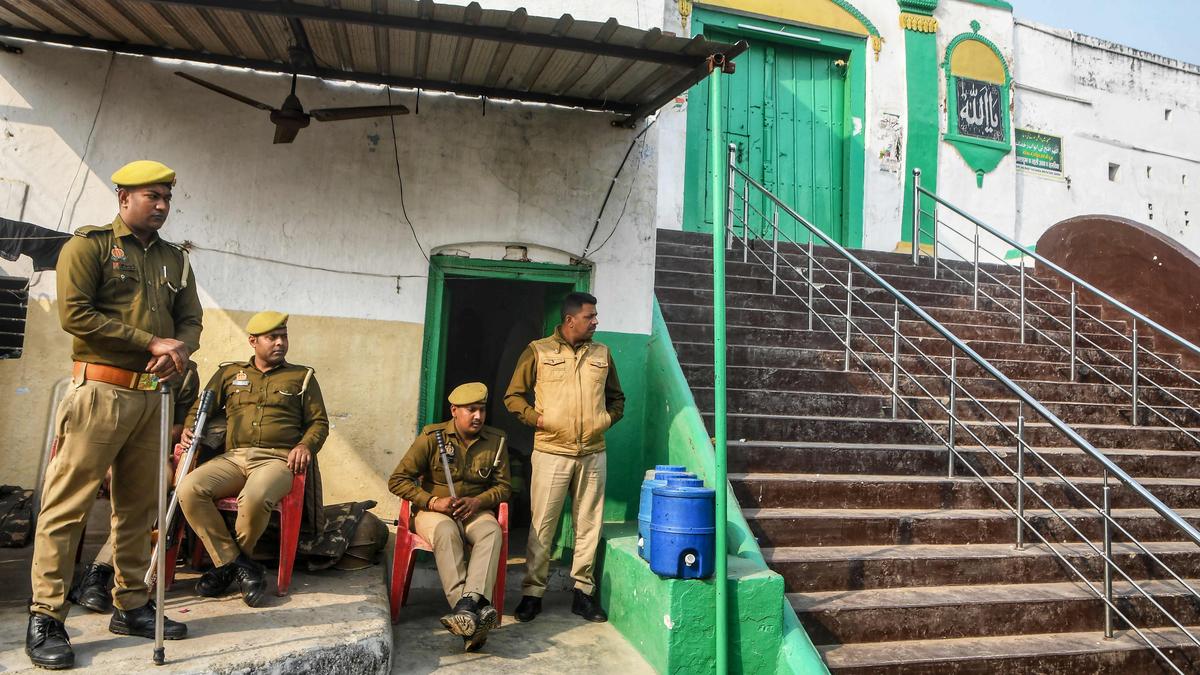
- 01 Dec 2024
In News:
The controversy surrounding the Shahi Jama Masjid in Sambhal, Uttar Pradesh, has intensified following claims that the mosque, built during the Mughal Emperor Babur's reign (1526–1530), was constructed over a Hindu temple, the Hari Har Mandir. This claim has led to legal battles and violent clashes, making it part of a broader series of disputes involving mosques built during the Mughal era, such as the Gyanvapi mosque in Varanasi and the Eidgah Masjid in Mathura.
Background and Legal Context:
The dispute began when a petition was filed in Sambhal's district court on November 19, 2024, claiming the Jama Masjid was built on the site of an ancient temple. The petitioners, led by Hari Shanker Jain, demanded a survey to ascertain the religious character of the site. This petition follows a pattern seen in similar cases in Varanasi, Mathura, and Dhar, where Hindu groups have raised similar claims about mosque sites. The court ordered a photographic and videographic survey of the mosque, which, initially carried out peacefully, later sparked violence on November 24 when the survey was accompanied by chanting crowds. This led to protests, stone pelting, and allegations of police firing, resulting in several deaths.
The Jama Masjid is a protected monument under the Ancient Monuments Preservation Act, 1904, and is listed as a Monument of National Importance by the Archaeological Survey of India (ASI). This gives the case legal and cultural sensitivity, as it involves both national heritage and religious sentiments.
Historical and Architectural Context:
The Shahi Jama Masjid in Sambhal was constructed by Mir Hindu Beg, a general under Babur, in the early 16th century. It is one of three mosques commissioned by Babur, alongside those in Panipat and Ayodhya. The mosque is noted for its architectural style, which includes a large square mihrab hall, a dome, and arches, constructed using stone masonry and plaster. Some historians argue that the mosque might be a Tughlaq-era structure modified during Babur's reign. Locally, Hindu tradition holds that the mosque incorporates elements of a Vishnu temple, believed to be the site of Kalki, the tenth avatar of Vishnu.
The Places of Worship Act, 1991:
The dispute has reignited debates about the Places of Worship (Special Provisions) Act, 1991, which mandates that the religious character of any place of worship as it existed on August 15, 1947, should be maintained, with the exception of the ongoing Babri Masjid dispute. The Act aims to prevent any further contests regarding religious sites, and Section 3 of the Act explicitly prohibits converting a place of worship into a site of a different religious denomination.
The petition filed in Sambhal seeks to alter the religious character of the mosque, directly contravening the Places of Worship Act. The petitioners have cited remarks by Supreme Court Justice D.Y. Chandrachud in 2022, suggesting that a survey to ascertain the religious character of a place might not violate the Act. This has led to petitions challenging the Act in the Supreme Court, including cases from Varanasi, Mathura, Dhar, and now Sambhal.
The Legal and Social Implications:
The ongoing dispute over the Shahi Jama Masjid highlights the tension between historical narratives, legal frameworks, and communal harmony. The Supreme Court has intervened in the matter, temporarily halting further proceedings in the trial court, urging that the mosque's management committee approach the Allahabad High Court. The Court emphasized the importance of maintaining peace and harmony and cautioned against any actions that could escalate tensions.
The case underscores the challenges of balancing India's rich historical heritage with its diverse religious communities. As the legal process unfolds, the outcome of the Sambhal dispute could set significant precedents for how similar cases are handled in the future.
Conclusion:
The Sambhal mosque dispute, much like the Gyanvapi and Ayodhya cases, brings to the forefront the complex intersections of history, religion, and law. It also raises critical questions about the application of the Places of Worship Act and its implications for preserving India's pluralistic society. The outcome of this case, alongside the pending petitions in other states, will be crucial in shaping the future of religious site disputes in India.
India-Cambodia Joint Military Exercise CINBAX
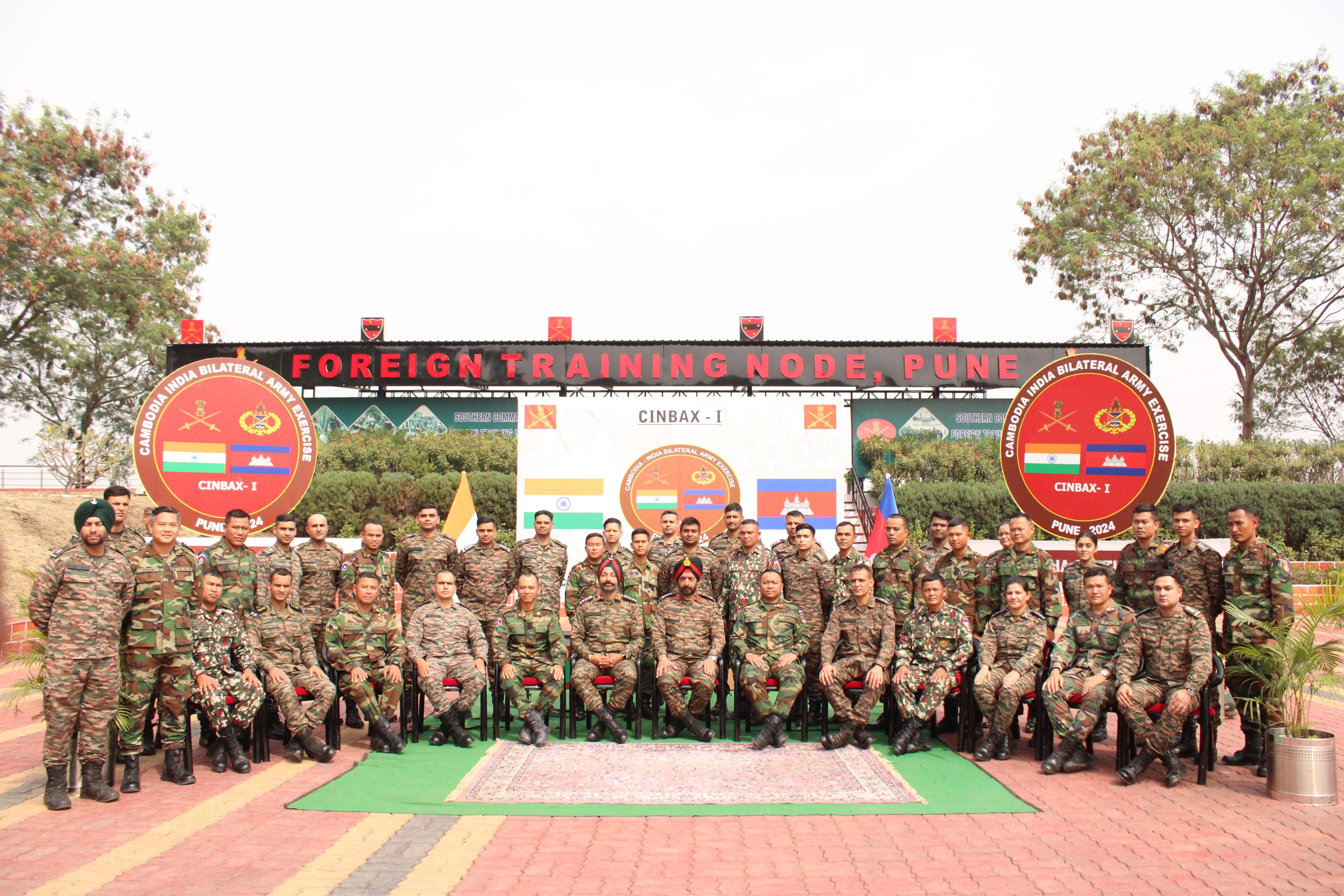
- 01 Dec 2024
In News:
The first edition of CINBAX (Counter-Terrorism Counter-Bio-Terrorism and Intelligence Operations Exercise) was launched on December 1, 2024, at the Foreign Training Node, Pune.
Key Details:
- Participants: 20 personnel from each side – the Indian Army and the Cambodian Army – focusing on enhancing cooperation for UN peacekeeping operations.
- Objective:
- Enhancing Trust and Interoperability: CINBAX aims to foster mutual trust, build camaraderie, and improve operational efficiency between the two armies in conducting peacekeeping operations under UN guidelines.
- Focus Areas: Joint Counter-Terrorism (CT) operations, Intelligence, Surveillance, and Reconnaissance (ISR), cyber warfare, logistics, casualty management, and disaster relief operations.
- Phases of the Exercise:
- Phase I: Orientation for Counter-Terrorism operations in the context of UN peacekeeping missions.
- Phase II: Conduct of tabletop exercises to simulate and plan response scenarios.
- Phase III: Finalization of plans and review of lessons learned, focusing on operational strategies and tactical decision-making.
- Key Topics Covered:
- Discussions on setting up a Joint Training Task Force for intelligence, surveillance, and reconnaissance.
- Exploring cyber warfare, hybrid warfare, and unconventional tactics.
- Strategies for managing logistics, casualties, and coordination during Humanitarian Assistance and Disaster Relief (HADR) operations.
- Promotion of Indigenous Defence Equipment:
- The exercise will showcase Indian-made weapons and defence equipment, supporting India’s commitment to Atmanirbhar Bharat (self-reliance in defence production).
- Objective: To highlight India's advanced military technology and indigenous defence capabilities.
- Significance for India-Cambodia Relations:
- The exercise strengthens military ties between India and Cambodia, contributing to improved cooperation in regional peacekeeping efforts.
- CINBAX marks a significant milestone in India-Cambodiadefence collaboration and sets the stage for future joint operations.
India-Cambodia Bilateral Relations
- Historical Context:
- India and Cambodia share strong religious, cultural, and linguistic ties, with Hindu rituals influencing Cambodian culture and Sanskrit and Khmer sharing common words.
- Diplomatic relations were established in 1952, even before Cambodia's independence from France.
- Key Developments:
- 1954: Prime Minister Jawaharlal Nehru visited Cambodia, initiating strong diplomatic ties, particularly during the Non-Aligned Movement.
- Post-1970s: India played a pivotal role in Cambodia's recovery from the Khmer Rouge regime. India was the first democratic country to recognize the Heng Samrin regime in 1981 and contributed to Cambodia's political reconciliation.
- 1980s: India facilitated dialogue for the Paris Peace Accord and contributed to the success of UNTAC elections in 1993.
- Strategic and Economic Cooperation:
- Defence: Enhanced cooperation in defence capacity building, military training, and infrastructure development.
- Trade: India exports pharmaceuticals, bovine meat, automobiles, and leather products to Cambodia. In return, Cambodia exports organic chemicals, apparel, and footwear to India.
- Mekong-Ganga Cooperation (MGC): Established in 2000, MGC includes Cambodia and aims to enhance cooperation in sectors like trade, education, tourism, and cultural exchanges.
- Recent Collaboration:
- India has extended financial assistance for infrastructure projects in Cambodia, especially in restoring and conserving cultural heritage sites like Angkor Wat.
- MoUs signed in bilateral cooperation, cultural exchanges, and development projects highlight the growing India-Cambodia strategic partnership.
Grievance Redressal Assessment and Index (GRAI) 2023
- 01 Dec 2024
In News:
- It was launched by Dr. Jitendra Singh, the Union Minister of State for Science & Technology, Earth Sciences, PMO, Personnel, Public Grievances, Pensions, Atomic Energy, and Space, along with Shri V. Srinivas, the Secretary of the Department of Administrative Reforms and Public Grievances (DARPG).
- This initiative, conceptualized by DARPG, aims to evaluate and rank central Ministries and Departments based on their grievance redressal mechanisms.
Key Aspects of GRAI 2023:
- Objective: GRAI 2023 was designed to provide a comparative assessment of Ministries and Departments based on their grievance redressal systems. It was created based on recommendations from the Parliamentary Standing Committee of the Ministry of Personnel, Public Grievances, and Pensions.
- Assessment Method: The index evaluates 89 Central Ministries and Departments across four dimensions:efficiency, feedback, domain&organisational Commitment
- It is calculated using data from the Centralised Public Grievance Redressal and Management System (CPGRAMS) from January to December 2023. Ministries are grouped into three categories based on the number of grievances received in 2023:
- Group A: Ministries/Departments with more than 10,000 grievances (28 Ministries/Departments)
- Group B: Ministries/Departments with 2,000 to 9,999 grievances (33 Ministries/Departments)
- Group C: Ministries/Departments with fewer than 2,000 grievances (28 Ministries/Departments)
- Top Performers:
- Group A: The Department of Agriculture and Farmers Welfare topped the rankings.
- Group B: The Office of the Comptroller & Auditor General of India led.
- Group C: The Department of Investment & Public Asset Management ranked first.
- It is calculated using data from the Centralised Public Grievance Redressal and Management System (CPGRAMS) from January to December 2023. Ministries are grouped into three categories based on the number of grievances received in 2023:
- Analysis: GRAI 2023 includes an in-depth analysis of the root causes of effective grievance redressal for each Ministry/Department, presented in a color-coded, easily understandable format.
- Advancements: The report outlines a roadmap for improving grievance redressal, emphasizing:
- Utilization of advanced technologies such as AI and Machine Learning (ML) for predictive analytics and data analysis.
- The introduction of features like IGMS 2.0 and TreeDashboard within CPGRAMS.
- Improved training for Grievance Redressal Officers (GROs) and more rigorous audits to increase accountability.
- Expansion of CPGRAMS integration to local governments, enhancing the grievance redressal system across all levels of governance.
Commonwealth Secretariat recognized CPGRAMS as a best practice in grievance redressal at its meeting in April 2024.
13th National Seed Congress (NSC)
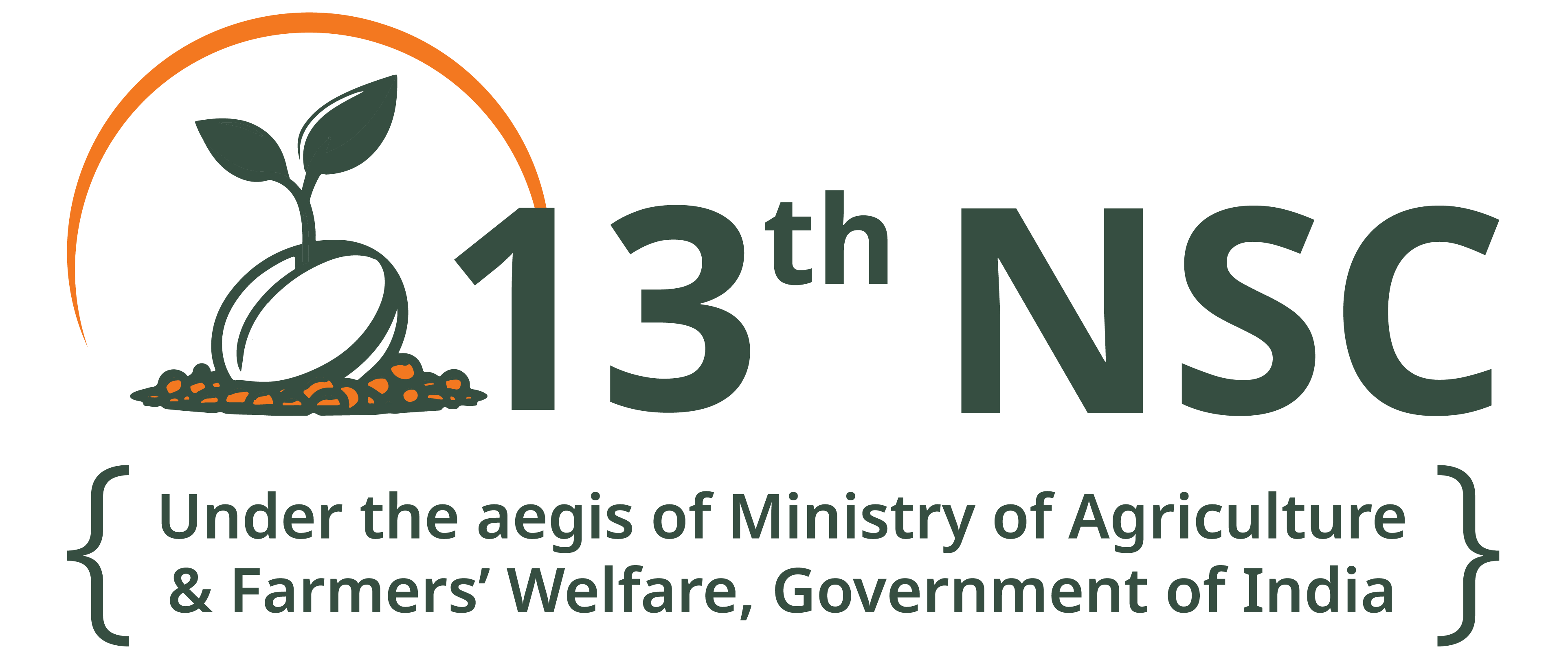
- 30 Nov 2024
In News:
- The 13th National Seed Congress (NSC), organized by the Ministry of Agriculture & Farmers' Welfare, concluded with significant discussions and outcomes focused on advancing India's seed sector.
- The theme for this year's congress, held in Varanasi, was "Innovating for a Sustainable Seed Ecosystem."
Key Highlights:
- Focus Areas:
- Seed Technologies and Biofortification: Emphasis on high-nutrition seeds like iron and zinc-enriched rice and Vitamin A-rich crops to combat malnutrition.
- Climate-Resilient Agriculture: Promoting practices like Direct Seeded Rice (DSR) and the development of stress-tolerant seed varieties to withstand climate change.
- Challenges in India’s Seed Ecosystem:
- Seed Replacement Rate (SRR): SRR in India is around 15-20%, with 100% for hybrid seeds, pointing to the need for higher adoption of certified seeds.
- Monoculture and Seed Market Monopoly: Issues like over-reliance on Bt cotton and domination by multinational companies (e.g., Bayer) in seed markets.
- Government Initiatives:
- National Seed Corporation (NSC): Produces foundation and certified seeds for over 600 varieties.
- Seed Village Programme (Beej Gram Yojana): Focus on improving the quality of farm-saved seeds.
- National Seed Reserve: Ensures seed availability during climatic disruptions.
- Policy Discussions:
- Proposed Seeds Bill: A new bill to regulate seed quality and promote sustainable practices.
- Public-Private Partnerships: Strengthening collaborations to improve seed production, accessibility, and quality.
- Outcomes:
- Biofortified Seeds: Increased development and distribution of nutrient-rich seeds.
- Climate-Resilient Seed Systems: Enhanced focus on developing crops that can withstand climate challenges.
- Public-Private Partnerships: Strengthening collaborations in seed technology and policy reform.
U.N. Peacebuilding Commission
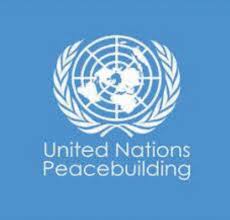
- 30 Nov 2024
In News:
India has been re-elected to the United Nations Peacebuilding Commission (PBC) for the term 2025–2026, continuing its strong commitment to global peace and stability.
UN Peacebuilding Commission (PBC)
It is an advisory body established by the UN General Assembly and UN Security Council in 2005. It is tasked with supporting peace efforts in conflict-affected countries by advising and recommending strategies for post-conflict recovery and long-term peacebuilding.
Composition of PBC:
- The PBC is composed of 31 member states, elected from the General Assembly, Security Council, and Economic and Social Council.
- It includes key financial and troop-contributing countries, which play a central role in shaping global peacebuilding initiatives.
Key Mandates of the PBC
- Coordination of Resources and Strategies:The Commission brings together all relevant actors to propose integrated strategies for post-conflict recovery and peacebuilding.
- Reconstruction and Development:It focuses on rebuilding conflict-affected countries through institution-building and supporting sustainable development efforts.
- Improving Coordination:The PBC ensures better coordination within and outside the UN, develops best practices, and secures predictable financing for early recovery initiatives.
- Sustaining Peace:The Commission promotes sustained international attention to peacebuilding efforts and offers political support to countries emerging from conflict, with their consent.
- Integrated Approach:The PBC advocates for an integrated approach that links security, development, and human rights as interrelated and mutually reinforcing.
- Bridging Role:It serves as a platform to connect UN bodies, Member States, national authorities, civil society, and other stakeholders, sharing good practices in peacebuilding.
India’s Contributions to UN Peacebuilding and Peacekeeping
India has been at the forefront of UN peacebuilding initiatives due to its long-standing commitment to international peace and stability.
- Largest Contributor of Personnel:India is one of the largest contributors of uniformed personnel to UN Peacekeeping. Currently, around 6,000 Indian military and police personnel are deployed across multiple missions in Abyei, Central African Republic, Cyprus, Democratic Republic of Congo, Lebanon, Middle East, Somalia, South Sudan, and Western Sahara.
- Sacrifices in Service:India holds the tragic distinction of having lost over 180 peacekeepers, the highest number from any troop-contributing nation. These sacrifices reflect India's enduring commitment to global peace.
- Financial Support:India contributes to the Peacebuilding Fund, the primary financial instrument for conflict prevention and peacebuilding, which supports countries transitioning from conflict to peace.
- Championing South-South Cooperation:India has actively promoted South-South cooperation, a model for post-conflict recovery that emphasizes shared learning and capacity-building among developing nations.
- Women in UN Peacekeeping:India has led efforts for gender parity in UN peacekeeping. In 2007, India became the first country to deploy an all-women contingent to a UN peacekeeping mission. It has since deployed Female Engagement Teams (FETs) and Female Formed Police Units (FFPUs) in Lebanon and the Democratic Republic of Congo.
- Training and Capacity Building:India has invested in capacity development for both the UN and host nations. The Centre for UN Peacekeeping (CUNPK) in New Delhi, established by the Indian Army, trains over 12,000 troops annually in peacekeeping operations. India also deploys Mobile Training Teams to share best practices with other countries.
India’s Pledges at the UN Peacekeeping Ministerial (2023)
At the UN Peacekeeping Ministerial held in Accra, Ghana (December 2023), India made significant pledges:
- To contribute an Infantry Battalion Group, along with various sub-groups and pre-deployment training courses, for the next two years.
- India’s ongoing commitment to strengthening peacekeeping efforts and supporting the UN’s peacebuilding agenda was reaffirmed.
Flexible UG Degree Completion Norms
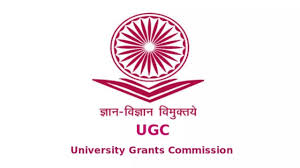
- 30 Nov 2024
In News:
- The University Grants Commission (UGC) has approved new guidelines for undergraduate (UG) degree completion, offering flexibility in the duration of academic programs.
Key Details:
- Two Options for Degree Completion:
- Accelerated Degree Programme:Students with exceptional academic performance or those completing additional credits can graduate earlier than the standard duration.
- Extended Degree Programme:Students facing personal, financial, or academic challenges can extend the time for degree completion without facing penalties.
- Objective:
- Enhance flexibility and a student-centric approach to higher education.
- Address challenges like balancing education with personal or professional commitments.
- Institutional Autonomy:Higher Education Institutions (HEIs) can implement these options based on available infrastructure and academic resources.
- Recognition of Flexibility:Degrees completed earlier or later will be treated on par with those completed within the standard duration.
- Alignment with Global Trends:This initiative aligns with global educational trends towards flexible learning paths.
- Support for Interdisciplinary Studies:The new regulations are expected to benefit students pursuing interdisciplinary studies or professional courses.
- NEP 2020 Alignment:The move is in line with the National Education Policy (NEP) 2020, which promotes learner-centric education and skill development.
- Impact:The decision is likely to provide more options for students, making higher education more accessible and tailored to individual needs.
Global Wage Report 2024-25
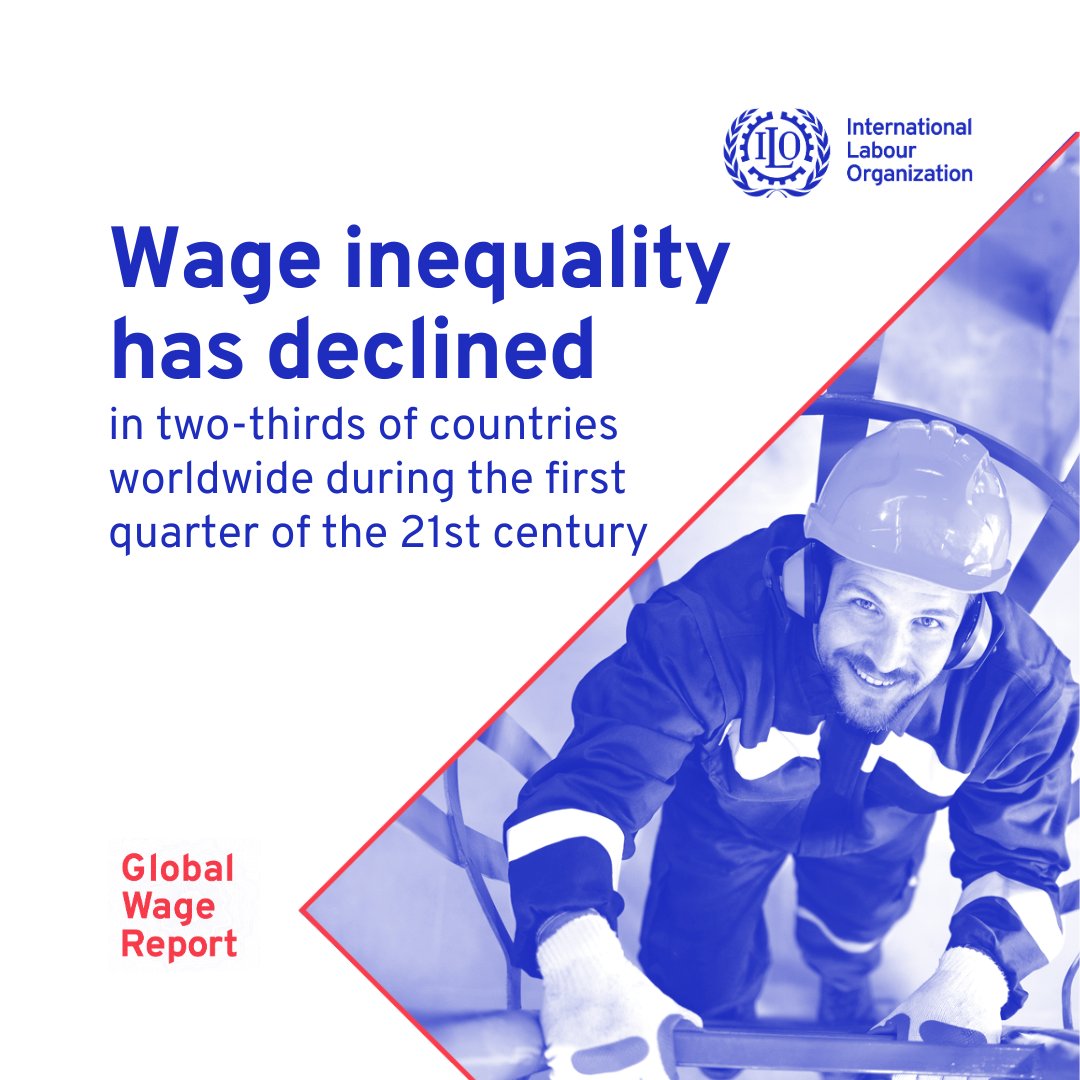
- 29 Nov 2024
In News:
A new report from the International Labour Organization (ILO) reveals that wage inequality has decreased in about two-thirds of all countries since 2000. Despite this positive trend, significant wage differentials persist worldwide.
Global Wage Inequality Trends:
- Wage inequality has decreased in about two-thirds of all countries since 2000.
- Average Annual Decrease in Wage Inequality:
- Ranges from 0.5 to 1.7% globally, depending on the measure used.
- More significant reductions have been observed in low-income countries, where the decrease has ranged from 3.2 to 9.6% over the past two decades.
- Wealthier Countries: Wage inequality has decreased at a slower pace:
- Upper-middle-income countries: annual decrease of 0.3 to 1.3%.
- High-income countries: annual decrease of 0.3 to 0.7%.
Global Real Wage Growth:
- Global real wages grew by 1.8% in 2023, with projections reaching 2.7% growth in 2024 (highest increase in over 15 years).
- This marks a recovery from the negative global wage growth of -0.9% in 2022 due to high inflation rates.
Regional Wage Growth:
- Emerging Economies: Saw stronger wage growth than advanced economies.
- Emerging G20 economies: 1.8% growth in 2022 and 6.0% growth in 2023.
- Advanced Economies: Faced real wage declines.
- G20 advanced economies: Declined by -2.8% in 2022 and -0.5% in 2023.
- Fastest Wage Growth: Observed in regions like Asia-Pacific, Central and Western Asia, and Eastern Europe.
Wage Inequality Persistence:
- Income Distribution: The lowest-paid 10% of workers earn just 0.5% of the global wage bill, while the highest-paid 10% earn nearly 38%.
- Wage Inequality in Low-Income Countries: Particularly high, with nearly 22% of wage workers classified as low-paid.
- Women and Informal Economy Workers: More likely to be among the lowest-paid workers, underscoring the need for targeted actions to close wage and employment gaps.
Non-Wage Workers:
- Globally, one in every three workers is a non-wage worker.
- In low- and middle-income countries, many workers are self-employed in the informal economy, which skews overall income inequality measures.
- Income inequality in these regions is higher when including self-employed workers, especially those in informal employment.
Policy Recommendations:
- Targeted Policies: To reduce wage inequality, countries need stronger wage policies and structural support for equitable growth.
- Focus Areas:
- Promote productivity and decent work.
- Formalization of the informal economy to help reduce income inequality.
- Inclusive Growth: The ILO emphasizes that national strategies should aim for inclusive economic growth to achieve fair wages and reduce wage gaps.
Key ILO recommendations include:
- Setting wages through social dialogue: wages should be set and adjusted through collective bargaining or agreed minimum wage systems involving governments, workers and employers.
- Taking an informed approach: wage-setting should take into account both the needs of workers and their families and economic factors.
- Promoting equality, and equal opportunity of treatment and outcomes: wage policies should support gender equality, equity and non-discrimination.
- Using strong data: decisions should be based on reliable data and statistics.
- Addressing root causes of low pay: national policies should reflect each country’s specific context and address the causes of low pay such as informality, low productivity and the under-valuing of jobs in sectors such as the care economy.
Supreme Court Ruling on EVMs
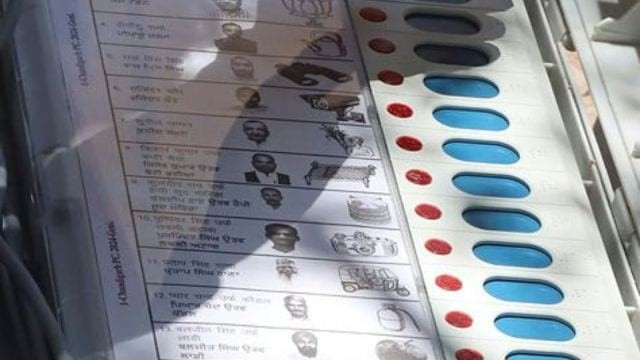
- 28 Nov 2024
In News:
The Supreme Court dismissed the PIL, remarking that EVMs are only questioned after electoral losses, not when elections are won. It emphasized that no evidence of tampering was found.
What Are EVMs and VVPATs?:
- EVMs: Electronic Voting Machines are used for conducting elections to the Parliament, state legislatures, and local bodies. They consist of two units: theControl Unit (operated by the polling officer) and the Ballot Unit (where voters cast their votes).
- VVPAT: The Voter Verifiable Paper Audit Trail enables voters to verify that their vote is recorded as cast. A slip is printed showing the candidate’s name, symbol, and serial number, visible for 7 seconds before being cut and stored in a sealed box.
Safeguards to Ensure EVM Integrity:
- Technical Safeguards:
- Microcontroller Security: EVMs use one-time programmable (OTP) microcontrollers, which cannot be altered after manufacturing.
- Standalone Operation: EVMs do not have wired or wireless connectivity, eliminating risks of remote tampering.
- Post-2013 Features: Advanced EVMs (M3) include tamper detection and mutual authentication protocols.
- Administrative Protocols:
- Randomized EVM Allocation: EVMs are randomly allocated to polling stations to avoid predetermined assignments.
- Mock Polls: Multiple mock polls are conducted to test the functionality of EVMs.
- Counting Procedures: EVMs are brought to counting tables under CCTV surveillance, and VVPAT slips are randomly cross-verified.
- Secure Storage: EVMs are stored under strict protocols, including double-lock systems, CCTV surveillance, and GPS-tracked transport.
Advantages of EVMs Over Ballot Papers:
- Elimination of Invalid Votes: EVMs ensure no invalid votes, a common problem with torn or mis-marked ballot papers.
- Prevention of Booth Capturing: EVMs restrict vote casting to 4 votes per minute, preventing fraudulent vote insertion.
- Accurate and Fast Counting: EVMs enable quick, error-free vote counting, reducing delays and human errors.
- Transparency: Voters can verify their votes through the VVPAT, and the vote count is displayed transparently without revealing candidate-wise results prematurely.
Evolution of EVMs in India:
- 1977: Concept of EVMs conceived.
- 1990: The Dinesh Goswami Committee recommended the use of EVMs.
- 2004: EVMs used nationwide in Lok Sabha elections.
- 2013: VVPAT was introduced to improve transparency.
- 2019: First nationwide use of EVMs backed by VVPAT.
E-Daakhil Portal
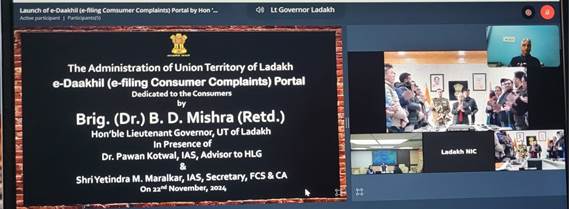
- 28 Nov 2024
In News:
- The E-Daakhil portal was launched by the Department of Consumer Affairs to promote consumer rights and ensure timely justice.
- The portal was launched nationwide with its final rollout in Ladakh on 22nd November 2024, making it operational across all states and union territories of India.
Background and Purpose:
- Introduced in September 2020, the portal was developed in response to the Consumer Protection Act 2019, which aims to address emerging consumer concerns.
- Aimed at providing a hassle-free, inexpensive, and speedy mechanism for filing consumer complaints, especially post the COVID-19 pandemic.
- E-Daakhil is an online platform that simplifies the grievance redressal process, allowing consumers to file complaints remotely, without the need for physical presence.
Portal Features:
- User-friendly interface: Simple and intuitive, allowing consumers to file and track complaints online.
- Registration process: Users can register through OTP on their mobile or an activation link via email.
- Paperless and transparent: The entire process, from filing complaints to tracking the case status, is digital and transparent.
- Consumers can file complaints, pay fees, and monitor the progress of their cases from the comfort of their homes.
Success and Impact:
- By the end of 2023, E-Daakhil was available in 35 states and union territories; with Ladakh being the latest addition in November 2024.
- Over 2.81 lakh users have registered, and 1.98 lakh cases have been filed, of which 38,453 cases have been disposed of.
Future Developments:
- E-Jagriti: A new initiative that will further streamline the case filing, tracking, and management process, reducing delays and paperwork.
- E-Jagriti aims to improve communication between parties, ensuring faster dispute resolution.
National Mission on Natural Farming (NMNF)
- 27 Nov 2024
In News:
The Union Cabinet approved the launching of the National Mission on Natural Farming (NMNF) as a standalone Centrally Sponsored Scheme under the Ministry of Agriculture & Farmers' Welfare.
Key Highlights
Objective & Focus:
- Launch of NMNF by the Union Cabinet to promote chemical-free farming in India.
- Aim to improve soil health, reduce input costs, and produce nutritious food.
- Support the shift to natural farming (NF), emphasizing local knowledge and agro-ecological principles.
Financial Allocation:
- Total Outlay: ?2481 crore (Government of India share ?1584 crore, State share ?897 crore) until FY 2025-26.
Key Features of NMNF:
- Coverage: Targeting 15,000 clusters in Gram Panchayats, covering 7.5 lakh hectares and impacting 1 crore farmers.
- Bio-Input Resource Centres (BRCs): 10,000 BRCs to supply ready-to-use natural farming inputs.
- Krishi Vigyan Kendras (KVKs) and Agricultural Universities (AUs): Establishment of 2,000 model demonstration farms for hands-on training in natural farming techniques.
- Farmer Training: 18.75 lakh farmers to be trained in NF practices such as preparation of organic inputs like Jeevamrit and Beejamrit.
- Krishi Sakhis/CRPs: Deployment of 30,000 workers for farmer mobilization and awareness.
Implementation Strategy:
- Farmer Certification System: Providing easy, simple certification for marketing natural farming produce with dedicated branding.
- Monitoring: Real-time, geo-tagged monitoring of implementation through an online portal.
- Convergence with other government schemes and organizations for market linkages and support.
Natural Farming Practices:
- Zero Budget Natural Farming (ZBNF): Promote sustainable farming by using local livestock and diverse crop systems.
- Benefits: Reduce dependence on external inputs like chemical fertilizers and pesticides, rejuvenate soil quality, and increase resilience to climate risks (e.g., drought, floods).
- Encourage biodiversity, and improve soil carbon content and water-use efficiency.
Targeted Areas and Farmer Support:
- Focus on areas where NF practices are already being followed or where farmer producer organizations (FPOs) or self-help groups (SHGs) are active.
- Training through model demonstration farms will focus on practical, location-specific NF techniques tailored to regional agro-ecologies.
Impact on Agriculture and Environment:
- Environmental Impact: Encourages sustainable farming by reducing chemical exposure, improving soil health, and promoting climate resilience.
- Farmer Well-being: By reducing input costs and promoting nutritious food, it aims to improve farmer incomes and family health.
- Contributing to the long-term health of the environment, ensuring a healthy Mother Earth for future generations.
Challenges and Concerns:
- Soil Nutrient Compromise: Concerns that some crops, like rice, might require chemical fertilizers (e.g., NPK) for optimal growth, which may not be sufficiently replaced by organic manure alone.
- The shift to natural farming requires significant awareness and training to ensure sustainable and productive yields.
Institutional Framework:
- Ministry of Agriculture and Farmers’ Welfare is the implementing body.
- Collaboration with KVKs, AUs, and farmer organizations ensures grassroots level support and knowledge dissemination.
Extension of Ban on ULFA
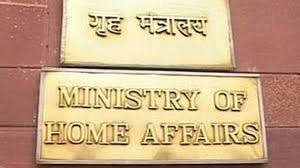
- 27 Nov 2024
In News:
- The Ministry of Home Affairs (MHA) extended the ban on United Liberation Front of Asom (ULFA) for five years under the Unlawful Activities Prevention Act (UAPA), 1967.
- The notification specifically includes all factions, wings, and front organizations associated with ULFA.
Reason for Extension:
- ULFA continues to pursue secessionist objectives (separation of Assam from India).
- The group is involved in criminal activities such as extortion, intimidation, and violent actions.
- ULFA has maintained links with other insurgent groups and continues to engage in illegal activities like the possession of arms and ammunition.
Peace Process:
- Pro-talks faction of ULFA, led by Arabinda Rajkhowa, signed a peace agreement with the central and Assam governments in December 2023.
- This faction has agreed to renounce violence, disband the organization, and join the democratic process.
- However, the hardline faction of ULFA, led by Paresh Baruah, remains active and continues its militant activities.
ULFA’s Formation and Objectives:
- ULFA was founded in 1979 with the goal of achieving the "restoration of Assam's sovereignty" through armed struggle.
- It has been a key player in the Assamese separatist movement for several decades.
Legal Framework:
- The UAPA (1967) empowers the government to declare an organization as unlawful or label individuals as terrorists if they engage in activities threatening India’s sovereignty, integrity, or promote terrorism and secession.
- The latest extension of the ban was made under Section 3(1) of UAPA.
Significance for Internal Security:
- This development is important for understanding insurgency and separatism in the Northeast and the government’s approach to national security and counterinsurgency.
- The ULFA issue highlights challenges in addressing regional insurgencies and the role of the UAPA in maintaining national integrity.
Socialist and Secular in Preamble
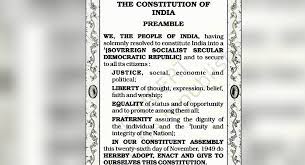
- 27 Nov 2024
In News:
Supreme Court upholds ‘secular, socialist’ in Preamble of the Constitution.
Key Highlights of the Supreme Court Judgment
- Judgment Overview:
- Supreme Court's Ruling: The Court upheld the inclusion of the terms ‘socialist’ and ‘secular’ in the Preamble of the Indian Constitution through the 42nd Amendment Act of 1976.
- Challenge: Petitioners, including BJP leader Subramanian Swamy, challenged the retrospective application of these terms, arguing they were not part of the original Preamble adopted in 1949.
- Court's Explanation:
- Socialist: The term represents a welfare state aimed at reducing inequality and ensuring social, political, and economic justice, but does not prescribe a specific economic policy (left or right).
- Secular: Denotes a state that treats all religions equally, ensuring religious freedom and neutrality in religious matters. It is linked to Articles 14, 15, and 16, which ensure equality and non-discrimination.
- Retrospective Application:The Court affirmed that Parliament’s amendment power under Article 368 extends to the Preamble, and the retrospective application of the terms was valid.
- Constitution as a ‘Living Document’:The Court emphasized that the Constitution is adaptable to societal changes and evolving needs. The inclusion of 'secular' and 'socialist' reflects India’s evolving democratic and social framework.
- Interpretation of Secularism and Socialism:
- Secularism in India refers to the state's neutral stance towards all religions, promoting religious harmony.
- Socialism signifies India’s commitment to ensuring equality of opportunity and promoting welfare policies, such as social justice and economic welfare.
Constitutional and Legal Framework
- Article 368: Grants Parliament the authority to amend the Constitution, including the Preamble. The Court affirmed that this power is unquestionable.
- Kesavananda Bharati Case (1973): Established the ‘basic structure doctrine,’ which means certain fundamental features of the Constitution cannot be altered. The inclusion of ‘secular’ and ‘socialist’ is in line with this basic structure.
- S.R. Bommai Case (1994): Reinforced the secular nature of the Indian state.
Preamble to the Constitution
- Definition: The Preamble is an introductory statement that outlines the fundamental values and goals of the Indian Constitution.
- Key Objectives: Justice (social, economic, political), Liberty (thought, expression, belief), Equality (status and opportunity), and Fraternity (national unity and dignity).
- Terms in the Preamble:
- Sovereign: India's independence in all matters.
- Socialist: Commitment to social justice and welfare.
- Secular: Equal respect for all religions.
- Democratic: Governance by the people, through elected representatives.
- Republic: Head of state elected, not hereditary.
42nd Amendment Act, 1976:
- Context: Introduced during the Emergency under Indira Gandhi's government.
- Key Changes: Added 'socialist' and 'secular' to the Preamble, revised 'Unity of the Nation' to 'Unity and Integrity of the Nation.'
- Significance: Strengthened constitutional values like inclusivity, equality, and justice.
Socialist and Secular Initiatives by Government
- Socialist Programs:
- MGNREGA: Rural employment guarantee.
- PDS: Food security system.
- Right to Education (RTE): Free, compulsory education.
- Housing Schemes: Awas Yojana for the economically weaker sections.
- Secular Programs:
- Minority Welfare: Scholarships and skill development.
- Religious Protection Laws: Protection of places of worship.
- Communal Violence Laws: Special courts for violence-related cases.
- Constitutional Safeguards: Equal rights for all religions under Articles 25-28.
Significance of the Supreme Court Judgment
- Reaffirmation of Constitutional Values: The inclusion of ‘socialist’ and ‘secular’ reinforces India’s commitment to equality, justice, and democratic principles.
- Legitimacy of Amendments: Affirms Parliament's constitutional power to amend the Preamble.
- Evolving Interpretation: Recognizes that the Constitution must evolve in response to societal and political changes.
India's First Constitution Museum

- 26 Nov 2024
In News:
Lok Sabha Speaker Om Birla and Union law minister Arjun Ram Meghwal inaugurated the country's first Constitution Museum at OP Jindal Global University in Sonipat.
Museum Features
- Centrepiece: A photolithographic copy of the Indian Constitution (one of 1,000 reproductions).
- 360-Degree Experience: A visual presentation that takes visitors through pre-Independence India.
- Multimedia Presentation: Chronologically details significant events leading to the drafting of the Constitution.
- Constituent Assembly Members:
- Nearly 300 sculptured busts of members who contributed to the making of the Constitution.
- Hologram of Dr. BR Ambedkar: Located in the mezzanine section, showcasing his philosophies through interactive displays.
- Art Installations:
- ‘We, The People of India’ by Rajesh P Subramanian: Represents unity in diversity.
- ‘Echoes of Liberty’ by Rahul Gautam: Combines constitutional manuscripts with contemporary design.
- ‘Triad of Unity’ by Harsha Durugadda: Symbolizes unity, justice, and sovereignty.
- ‘Insaaf Ki Devi’ by Nishant S Kumbhatil: Depicts Lady Justice, representing judicial impartiality.
- ‘Equality Before Law’ by Pradeep B Jogdand: Illustrates equality and justice principles.
- ‘Map’ by Deval Verma: Encourages visitors to reflect on value and beauty.
- ‘Freedom’ by KR Nariman: Pays tribute to the people who uphold constitutional values.
- ‘Founding Mothers’ by Rahul Gautam: Honors the 15 women members of the Constituent Assembly.
One Nation One Subscription (ONOS)
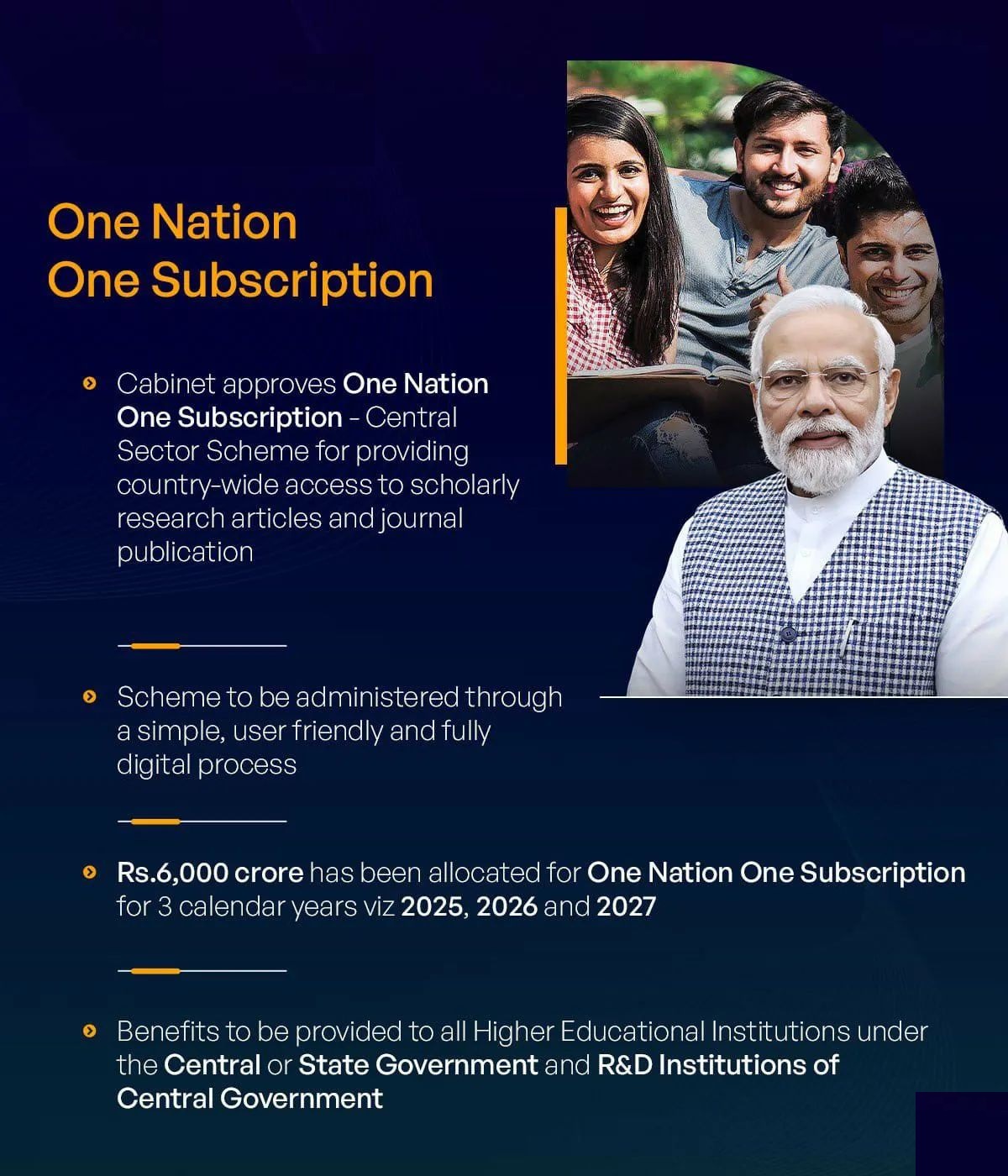
- 26 Nov 2024
In News:
Cabinet approves One Nation One Subscription (ONOS) Scheme.
Key Highlights:
- Objective: It is a new initiative to provide unified access to international scholarly research articles and journals for all government-managed higher education institutions and research institutions in India.
- Scheme Overview:ONOS aims to make nearly 13,000 scholarly journals accessible to over 1.8 crore students, faculty, researchers, and scientists in more than 6,300 institutions across India. These journals will cover all academic disciplines, promoting both core and interdisciplinary research, including in tier 2 and tier 3 cities.
- Digital Platform:The scheme will be implemented through a fully digital process, coordinated by the Information and Library Network (INFLIBNET), an autonomous center under the University Grants Commission (UGC). The platform will provide easy access to the journals and facilitate a streamlined subscription process.
- Investment and Coverage:A total of ?6,000 crore has been allocated for ONOS for three years (2025-2027). The scheme will cover major international publishers such as Elsevier, Springer, Wiley, and Oxford University Press. It will enable institutions to access 13,000 journals from 30 global publishers.
Benefits of the Scheme:
- Access to Top-Quality Research:ONOS will provide wide access to top-tier scholarly journals, benefiting institutions, researchers, and students across various fields. It will significantly improve the research environment in the country, especially for institutions that previously lacked the resources to access high-impact journals.
- Fostering Research and Development:The initiative aligns with India's vision of becoming an Atmanirbhar and Viksit Bharat by 2047, supporting the government's goals under the National Education Policy (NEP) 2020 and the Anusandhan National Research Foundation (ANRF). It will help foster a culture of research and innovation in Indian institutions.
- Inclusivity:The scheme will particularly benefit institutions in smaller towns and rural areas, helping bridge the knowledge gap between urban and rural academic institutions.
- Simplified Access:The scheme eliminates the need for separate subscriptions to individual journals by different institutions, streamlining access to high-quality content through a single platform.
Implementation Details:
- Platform and Process:The ONOS platform will allow institutions to access journals through a unified portal, providing easy and coordinated access. The Department of Higher Education (DHE)will be responsible for conducting awareness campaigns about the initiative, ensuring widespread utilization among students and faculty.
- Review Mechanism:The ANRF will monitor and periodically review the usage of ONOS and track the contributions of Indian authors in the journals, ensuring that the initiative continues to support India’s research landscape.
- Operational Date:The ONOS platform is set to become operational on January 1, 2025, providing comprehensive access to research materials for government-managed higher education and research institutions.
The One Nation One Subscription scheme is a major step towards enhancing India's position in the global research ecosystem. It will provide unparalleled access to scholarly resources, supporting research excellence and innovation across the country.
National Gopal Ratna Award 2024
- 26 Nov 2024
In News:
The Department of Animal Husbandry and Dairying (DAHD) declared the winners of the National Gopal Ratna Awards(NGRA); one of the highest National Awards in the field of livestock and dairy sector for the year 2024.
About the National Gopal Ratna Awards (NGRA):
- Purpose:Recognize and encourage individuals, AI technicians, dairy cooperatives, and farmer organizations in the livestock and dairy sector.
- Categories:
- Best Dairy Farmer (Indigenous Cattle/Buffalo Breeds)
- Best Artificial Insemination Technician (AIT)
- Best Dairy Cooperative/Milk Producer Company (MPC)/Dairy Farmer Producer Organization
- Addition (2024):Special awards for North Eastern Region (NER) to promote dairy development in the area, with winners in all three categories.
- and Prizes:
- Rs. 5 lakhs for 1st rank, Rs. 3 lakhs for 2nd rank, Rs. 2 lakhs for 3rd rank, and Rs. 2 lakhs for Special NER Award in the categories of Best Dairy Farmer and Best Dairy Cooperative/FPO/MPCs.
- For Best AIT, winners will receive a Certificate of Merit and a memento.
- Process:Winners selected from 2,574 applications via an online portal (https://awards.gov.in).
- The livestock sector is crucial for India's economy, contributing significantly to agriculture and providing livelihood, especially for small and marginal farmers, women, and landless laborers.
- Indigenous breeds have immense genetic potential, but their population and performance have been declining. To address this, the Rashtriya Gokul Mission was launched under the National Programme for Bovine Breeding and Dairy Development in 2014 to conserve and develop indigenous bovine breeds.
National Milk Day
- It is celebrated annually on November 26 in India to honor the significant contributions of milk and the dairy industry to the country's development.
- The day commemorates the birth anniversary of Dr VergheseKurien, the "Father of the White Revolution" in India, who played a pivotal role in transforming India into the largest producer of milk globally.
- National Milk Day was first celebrated on November 26, 2014, after the Indian Dairy Association (IDA), along with various dairy institutions across the country.
6th ASEAN-India Trade in Goods Agreement (AITIGA) Joint Committee Meeting
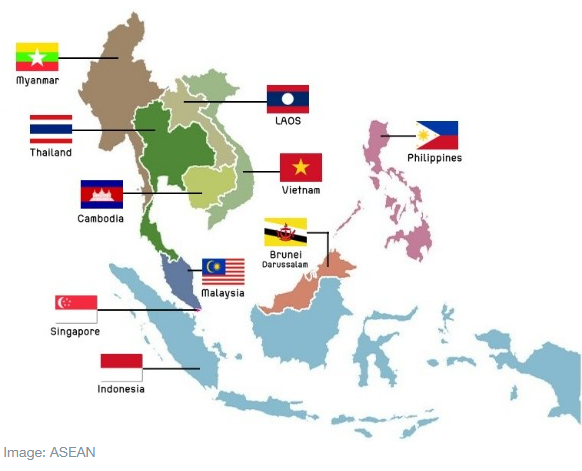
- 25 Nov 2024
In News:
The 6th ASEAN-India Trade in Goods Agreement (AITIGA) Joint Committee and related meetings for discussions on the review of the AITIGA were held recently in Vanijya Bhawan, New Delhi.
Key Highlights:
Key Negotiation Areas
- 8 Sub-Committees under the AITIGA Joint Committee discussed:
- Market access, rules of origin, SPS measures, standards and technical regulations.
- Customs procedures, economic and technical cooperation, trade remedies, and legal and institutional provisions.
- 5 Sub-Committees met physically during this round of negotiations.
Progress in Discussions
- Textual Discussions: Sub-Committees made progress in discussions on various provisions.
- Tariff Negotiations: Initial steps towards initiating tariff negotiations were covered.
High-Level Meetings Leading to AITIGA Review
- 21st ASEAN-India Economic Ministers Meeting: Held in September 2024 in Vientiane, Laos.
- 21st ASEAN-India Summit: Held in October 2024 in Vientiane, Laos.
Both meetings urged the Joint Committee to expedite negotiations and aim for the conclusion of the review in 2025.
Bilateral Meetings
- ASEAN delegates held separate bilateral meetings with Thailand and Indonesia to discuss bilateral trade issues.
- Indian and ASEAN Chief Negotiators met to align on the ongoing issues and future steps.
India's Review Demands
- Request for Review: India sought a review of AITIGA (implemented in 2010), citing disproportionate trade benefits favoring ASEAN countries.
- India’s Objectives:
- Enhanced Market Access: India pushed for ASEAN countries, especially Vietnam, to commit to greater market-opening for Indian goods.
- Stricter Rules of Origin (ROO): India requested more stringent ROO provisions to prevent Chinese goods from entering India via ASEAN countries at preferential rates.
Trade Relationship and Economic Impact
- Bilateral Trade:
- Total trade with ASEAN reached USD 121 billion in FY 2023-24.
- Trade during April-October 2024 was USD 73 billion, marking a 5.2% growth.
- Trade Deficit: India’s trade deficit with ASEAN widened from USD 4.98 billion in FY 2010-11 to USD 38.4 billion in 2023-24.
- ASEAN accounts for 11% of India’s global trade.
Future Outlook
- The next meeting of the AITIGA Joint Committee is scheduled for February 2025 in Jakarta, Indonesia.
- The review process aims to further enhance sustainable trade between India and ASEAN countries.
Project Veer Gatha

- 24 Nov 2024
In News:
Over 1.76 crore school students from all 36 States and UTs participated in Project Veer Gatha 4.0.
Key Highlights:
- Activities: Students submitted poems, paintings, essays, videos, and other creative works in honor of the bravery and sacrifice of Armed Forces personnel.
- Objective: Instituted in 2021, the project aims to spread the inspiring stories of Gallantry Awardees to foster patriotism among students.
- Platform for Creativity: Students engage in creative projects based on the heroic deeds and sacrifices of Gallantry Award winners.
- Previous Editions:
- Edition 1 (2021): 8 lakh students.
- Edition 2 (2022): 19.5 lakh students.
- Edition 3 (2023): 1.36 crore students.
- School-Level Activities: Schools conducted various activities from 16.09.2024 to 31.10.2024, uploading 4 best entries per school to the MyGov portal.
- Awareness Programs: The Ministry of Defence organized virtual and face-to-face awareness sessions across schools.
- Winner Recognition:
- Past Editions: 25 winners in Editions I and II, and 100 winners in Edition 3.
- Project 4.0: 100 National winners, each receiving Rs. 10,000.
- District & State/UT Winners: 4 District-level and 8 State/UT-level winners will be felicitated by respective authorities.
- Collaborative Initiative: The project is a joint effort of the Ministry of Defence and Ministry of Education.
11th ASEAN Defence Ministers’ Meeting-Plus (ADMM-Plus)
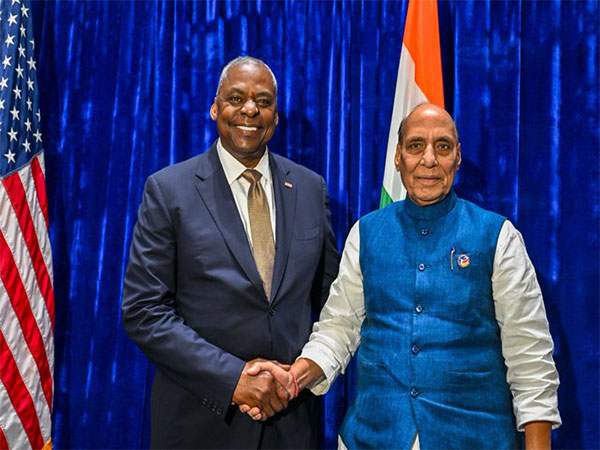
- 23 Nov 2024
In News:
The 11th ADMM-Plus held in Vientiane, Laos saw Union Defence Minister Rajnath Singh engage in discussions with his counterparts from the United States, Japan, and the Philippines.
Focus: The talks centered on strengthening defence partnerships, regional security, and enhancing cooperation among Indo-Pacific nations.
ASEAN Defence Ministers’ Meeting-Plus (ADMM-Plus):
- Platform for Dialogue: The ADMM-Plus is a key platform for ASEAN and its eight Dialogue Partners—Australia, China, India, Japan, New Zealand, Republic of Korea, Russia, and the United States.
- Establishment: The inaugural ADMM-Plus was held in HàN?i, Vietnam on 12 October 2010.
- Annual Meetings: Since 2017, the ADMM-Plus has met annually to enhance dialogue and cooperation amidst an increasingly complex regional security environment.
Objectives:
- Capacity Building: To aid ASEAN members in addressing shared security challenges.
- Promote Trust and Transparency: Enhance mutual trust and confidence between ASEAN and partner nations.
- Regional Peace and Stability: Focus on cooperation in defence and security to counter transnational security challenges.
- ASEAN Security Community: Contribute to realizing the ASEAN Security Community, as per the Bali Concord II, aiming for peace, stability, democracy, and prosperity in the region.
- Vientiane Action Programme: Facilitate ASEAN's efforts towards a peaceful, secure, and prosperous ASEAN with outward-looking relations with Dialogue Partners.
The science of plant communication

- 23 Nov 2024
In News:
More than any organism, plants understand the significance of communication the best.
Communication Through Chemical Warning (Volatile Organic Compounds - VOCs):
- Plants release volatile organic compounds (VOCs) when threatened, such as during herbivore grazing.
- VOCs act as distress signals, alerting neighboring plants to potential dangers.
- Neighboring plants respond by producing defensive compounds or toxins to deter herbivores.
- VOCs can travel through air and soil, enabling distant plants to prepare for threats, thereby enhancing survival across larger areas.
Wood Wide Web (Symbiotic Relationship with Mycorrhizal Fungi):
- Plants form a network with mycorrhizal fungi, connecting their roots in a symbiotic bond.
- This "Wood Wide Web" allows plants to communicate by sending chemical signals through their roots when under stress (e.g., pest attacks or drought).
- Fungi extend the root system and help share nutrients between plants, especially in times of distress.
- The network facilitates collective resilience and survival by ensuring nutrient sharing among plants.
Cooperative Behavior: Sharing Resources for Survival:
- Plants in close proximity, especially in dense forests, often share resources like water, nutrients, and light.
- When a plant detects a neighboring plant in distress, it prioritizes resource allocation to support its growth.
- This cooperative behavior promotes ecosystem stability and the overall health of forests.
- The mutual support system shows how cooperation enhances the survival of individual plants and the broader ecosystem.
Significance of Plant Communication in Ecosystem Health:
- Plants communicate through chemical signals, underground fungal networks, and cooperative behaviors.
- These interactions foster resilience, ensuring the survival of both individual plants and entire ecosystems.
- The silent communication among plants contributes to a dynamic, cooperative environment that thrives on mutual support.
Prasar Bharati’s OTT Platform – WAVES
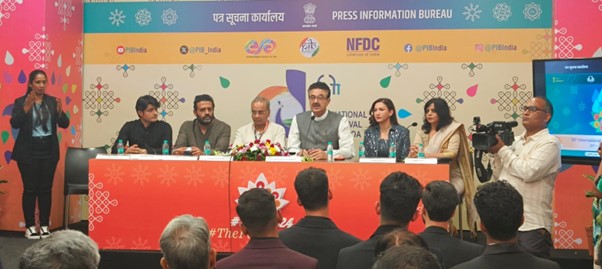
- 22 Nov 2024
In News:
Recently, Prasar Bharati launched its OTT platform WAVES, to cater to India’s increasing demand for digital streaming services.
Key Features of WAVES OTT Platform:
- Content Offered: A mix of classic content and contemporary programming, catering to various audiences.
- Target Audience: Aimed at Indians and those abroad wishing to stay connected to their Indian roots.
- Languages: Available in 12+ languages, including Hindi, English, Bengali, Marathi, Kannada, Malayalam, Telugu, Tamil, Gujarati, Punjabi, Assamese.
- Genres: Spanning 10+ genres, including infotainment, games, current affairs, and news.
- Free Access: Most content is available free to download and view, with exceptions for premium content.
- Additional Features:
- Video on demand.
- Free-to-play gaming.
- Radio streaming.
- Live TV streaming with 65 live channels.
- Online shopping via the Open Network for Digital Commerce (ONDC) supported e-commerce platform.
Content Highlights:
- Fauji 2.0: A modern adaptation of the iconic 1980s Shahrukh Khan show, focusing on lives of people who serve and protect India.
- Kakbhushandi Ramayana: An original show on DD National now available on WAVES, based on research of over 350 versions of the Ramayana worldwide. The show aims to provide a new portrayal of the epic, appealing to younger audiences.
Vision for WAVES OTT:
- WAVES aims to revive nostalgia while embracing modern digital trends.
- It serves as an inclusive platform that highlights Indian culture with an international outlook.
Indira Gandhi Prize for Peace, Disarmament, and Development
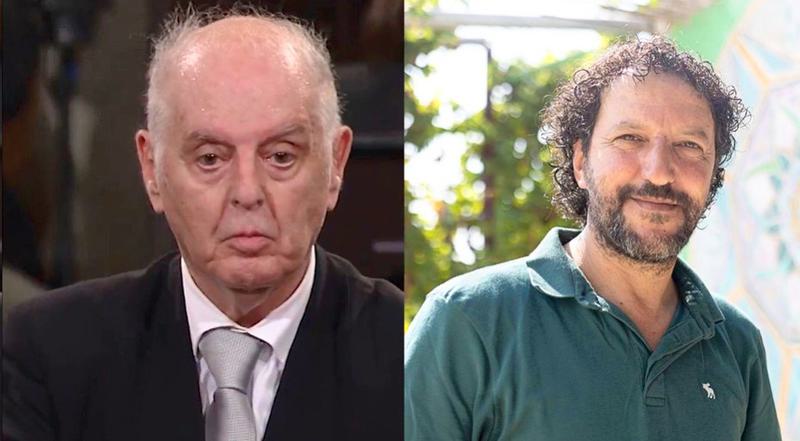
- 21 Nov 2024
In News:
- Daniel Barenboim (Classical Pianist and Conductor) and Ali Abu Awwad (Palestinian Peace Activist) were jointly awarded the Indira Gandhi Prize for Peace, Disarmament, and Development for 2023.
- Daniel Barenboim was recognized for fostering peace through musical and cultural dialogue initiatives.
- Ali Abu Awwad was honored for his advocacy of peace through dialogue via his organization Roots, which he founded after serving time in Israeli prison.
Significance of the Indira Gandhi Peace Prize:
- The award is given to individuals or organizations who have made outstanding contributions to international peace, disarmament, and development.
- It includes a monetary award of ?25 lakh and a citation.
About the Indira Gandhi Peace Prize:
- Established: 1986 by the Indira Gandhi Memorial Trust in memory of former Prime Minister Indira Gandhi.
- Objective: To honor sustained efforts towards international peace, the development of humanity, and the promotion of disarmament.
- Past recipients: Includes prominent figures and organizations such as Mikhail Gorbachev, UNICEF, Jimmy Carter, Angela Merkel, ISRO, and Sir David Attenborough.
2022 Awardees:
- The Indira Gandhi Peace Prize for 2022 was awarded to the Indian Medical Association and the Trained Nurses Association of India, in recognition of their contribution as COVID-19 warriors.
Key Takeaways:
- The Indira Gandhi Peace Prize is regarded as one of the most prestigious awards for promoting peace, disarmament, and development worldwide.
- Daniel Barenboim's musical initiatives and Ali Abu Awwad's work through dialogue exemplify efforts to bridge divides and promote peaceful resolutions to conflict.
India’s Polio Eradication Journey
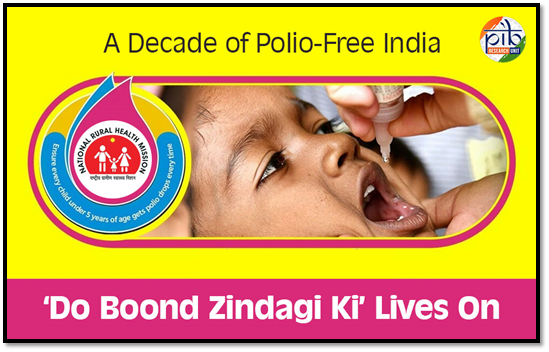
- 20 Nov 2024
In News:
India's achievement of becoming polio-free in 2014 stands as one of the most remarkable successes in global public health. This milestone, which was celebrated worldwide, represents decades of consistent efforts, collaboration, and innovative strategies, culminating in the elimination of wild poliovirus in the country.
Key Milestones in Polio Eradication
- Pulse Polio Programme Launch (1995):
- The Pulse Polio Immunization Programme was a game-changer, initiating large-scale vaccination campaigns across India, with the first nationwide campaign held on 2nd October 1994 (Gandhi Jayanti) in Delhi.
- The campaign used the Oral Polio Vaccine (OPV) and reached over 1 million children.
- The slogan "Do BoondZindagi Ki" (Two drops of life) became synonymous with India’s polio eradication efforts.
- Routine Immunization and System Strengthening:
- The Universal Immunization Programme (UIP), which launched in 1985, made polio one of the first diseases targeted for elimination. UIP is now one of the world’s largest immunization programs, aiming to provide vaccines against 12 preventable diseases, including polio.
- Cold chain management was improved through systems like the National Cold Chain Training Centre (NCCTE) and Electronic Vaccine Intelligence Network (eVIN), ensuring proper storage and distribution of vaccines.
- Inactivated Polio Vaccine (IPV) Introduction (2015):
- As part of the Global Polio Endgame Strategy, India introduced the Inactivated Polio Vaccine (IPV) in 2015 to provide enhanced protection, particularly against type 2 poliovirus.
- This move followed the global transition from trivalent OPV to bivalent OPV (which excludes the type 2 strain) and helped ensure continued protection against all forms of polio.
- Surveillance Systems:
- India implemented Acute Flaccid Paralysis (AFP) Surveillance to track unexplained paralysis in children, a symptom of polio.
- Environmental Surveillance, involving monitoring sewage water for poliovirus strains, played a critical role in identifying potential outbreaks and residual poliovirus transmission.
- Political Will & Community Engagement:
- Strong political commitment from both central and state governments ensured sustained resources and focus on the program.
- Community participation was also vital, with health workers and volunteers working to ensure vaccination coverage in the most remote areas.
The Final Leap: Certification and Maintenance
- 2011 marked the last case of wild poliovirus in Howrah, West Bengal, and India ramped up its surveillance and response efforts to ensure no further cases.
- India achieved polio-free certification from the World Health Organization (WHO) on 27th March 2014, after meeting strict criteria, including three years without wild poliovirus transmission and robust surveillance systems.
Post-Certification Efforts: Keeping Polio at Bay
Even after achieving polio-free status, India remains vigilant to maintain this achievement:
- Annual National Immunization Days (NID) and Sub-National Immunization Days (SNID) are held regularly to boost immunity levels and ensure no child is missed.
- Continuous surveillance and vaccination at international borders help prevent the risk of re-importation of the virus.
- Mission Indradhanush (MI), launched in 2014, aims to increase immunization coverage to 90%, focusing on hard-to-reach areas and improving vaccine coverage.
Ongoing Commitment to Immunization
India’s immunization programs continue to evolve:
- New vaccines like Rotavirus, Pneumococcal Conjugate Vaccine (PCV), and Measles-Rubella (MR) are being added to protect against other vaccine-preventable diseases.
- Mission Indradhanush’s intensified phase has played a crucial role in improving vaccination rates, particularly in underserved areas.
Army Tactical Missile System (ATACMS)
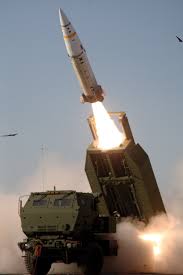
- 20 Nov 2024
In News:
- Russia reported that Ukraine fired six US-made Army Tactical Missile System (ATACMS) missiles at Bryansk, Russia, marking a significant escalation in the ongoing conflict.
- This came after US President Joe Biden authorized Ukraine to use long-range missiles to strike deeper inside Russian territory, easing previous restrictions on such weapons
About the Army Tactical Missile System (ATACMS)
- Overview:
- ATACMS is a surface-to-surface artillery weapon system designed to strike targets at much greater ranges than conventional artillery, rockets, or missiles.
- Manufacturer: Produced by Lockheed Martin, a leading US defense contractor.
- First Use: It was first used during the 1991 Persian Gulf War.
- Key Features:
- Guidance: ATACMS missiles are inertially guided ballistic missiles, capable of operating in all weather conditions.
- Range: Approximately 190 miles (305 km).
- Propulsion: It uses a single-stage, solid propellant for propulsion.
- Launch Platforms: Fired from platforms like the High Mobility Artillery Rocket System (HIMARS) and the M270 Multiple Launch Rocket System (MLRS).
- Payload: ATACMS missiles can carry cluster munitions, releasing hundreds of smaller bomblets over a targeted area, increasing their destructive power.
- Global Operators:Besides the US, ATACMS is also operated by countries such as Bahrain, Greece, South Korea, Taiwan, and the United Arab Emirates.
Sickle Cell Eradication

- 20 Nov 2024
In News:
- On the occasion of Janjatiya Gaurav Diwason 15th November 2024, Hon’ble Governor of Madhya Pradesh, and Chief Minister unveiled a commemorative postage stamp dedicated to "Sickle Cell Eradication - 2047" at PG College, Dhar.
- Significance:Focuses on India’s commitment to eradicate Sickle Cell Anemia by 2047, especially in tribal communities.
Sickle Cell Anemia Overview
- What is Sickle Cell Anemia?
- Genetic blood disorder leading to abnormal hemoglobin.
- Red blood cells become sickle-shaped, blocking blood flow and causing pain, organ damage, and reduced life expectancy.
- Symptoms:
- Chronic anemia causing fatigue, weakness, and pallor.
- Painful episodes (sickle cell crisis) resulting in intense pain in bones, chest, and limbs.
- Delayed growth and puberty in children.
- Treatment Processes:
- Blood Transfusions: Relieve anemia and reduce pain crises.
- Hydroxyurea: Reduces the frequency of painful episodes.
- Gene Therapy: Includes bone marrow or stem cell transplants and methods like CRISPR for treatment.
Challenges of Sickle Cell Disease (SCD) in India
- Tribal Population Impact:
- India has the world’s largest tribal population (~67.8 million, 8.6% of total population as per 2011 Census).
- Sickle Cell Disease (SCD) is identified as one of the top 10 health issues for tribal communities.
- Challenges:
- Limited diagnostic and treatment facilities in remote tribal regions.
- Lack of awareness about genetic counseling and preventive care.
- High treatment costs (e.g., CRISPR therapy costs USD 2-3 million).
- Bone marrow donor availability is a challenge.
Government Initiatives for SCD Management
- National Sickle Cell Anaemia Elimination Mission (2023):
- Objective: Eliminate SCD as a public health issue by 2047.
- Key Features:
- Community Screening: Mass screening to identify at-risk individuals.
- Genetic Counseling: Educating families on genetic nature of SCD.
- Advanced Diagnostics: Use of tools like HPLC for accurate diagnosis.
- Prenatal Testing: Partnership with organizations like Sankalp India.
- Newborn Screening: AIIMS Bhopal provides early detection.
- Technology: A mobile app and National Sickle Cell Portal for tracking data.
- Progress:Over 3.37 crore people screened, with 3.22 crore confirmed negative.
- Target Groups:Focus on children, adolescents, youth, and adults for screening, counseling, and care.
- National Health Mission (NHM) (2013):
- Emphasizes disease prevention and management, particularly for hereditary conditions like sickle cell.
- Facilitates medications like hydroxyurea for treatment.
- National Guidelines for Stem Cell Research (2017):Regulates stem cell therapies and allows Bone Marrow Transplantation (BMT) for SCD.
- National Guidelines for Gene Therapy (2019):Guidelines for gene therapies for inherited disorders, including CRISPR treatment for SCD.
- State Haemoglobinopathy Mission of Madhya Pradesh:Addresses screening and management challenges of SCD in the state.
Global Awareness and Observances
- World Sickle Cell Awareness Day:
- Observed on 19th June annually, with the 2024 theme: "Hope Through Progress: Advancing Sickle Cell Care Globally".
- Aimed at raising awareness about SCD struggles, improving patient care, and finding a cure.
Grand Commander of the Order of the Niger
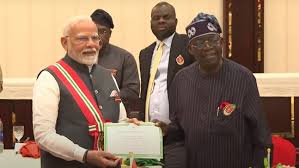
- 19 Nov 2024
In News:
PM Modi receives Nigeria’s second-highest national award.
Key Events and Achievements
- Award Conferred:
- Award Name: Grand Commander of the Order of the Niger (GCON).
- Significance: Nigeria’s second-highest national award, conferred on Prime Minister Narendra Modi.
- Historical Context: Modi becomes the second foreign dignitary to receive this award, after Queen Elizabeth in 1969.
Strategic and Developmental Ties Between India and Nigeria
- First Visit in 17 Years: Modi’s visit is the first by an Indian PM to Nigeria in 17 years, underscoring the significance of strengthening bilateral ties.
- Economic Cooperation:
- Over 200 Indian companies have invested around $27 billion in Nigeria across key sectors, making India a major economic partner.
- India has provided $100 million in development assistance through concessional loans and is actively involved in capacity-building training programs in Nigeria.
- MoUs Signed:
- Three Memoranda of Understanding (MoUs) were signed in the fields of:
- Cultural Exchange.
- Customs Cooperation.
- Survey Cooperation.
- Three Memoranda of Understanding (MoUs) were signed in the fields of:
- Relief Aid: Modi announced the dispatch of 20 tonnes of relief supplies to help Nigeria recover from the devastating floods that affected the country last month.
Diplomatic Discussions and Initiatives
- Strategic Partnership: Modi described the India-Nigeria partnership as one with immense potential in sectors like defence, energy, technology, trade, health, and education.
- Indian Expatriate Community: Modi acknowledged the 60,000-strong Indian diaspora in Nigeria, recognizing their role as a pillar of bilateral ties.
- Support for Africa:
- Modi highlighted India’s support for the African Union’s membership in the G20, an outcome of the India-hosted G20 summit in 2023.
- Nigeria’s Role: He noted Nigeria’s positive influence on Africa and its importance as a key partner in India’s Africa engagement.
Broader Implications for International Relations
- India-Nigeria Security Cooperation:
- The National Security Advisors (NSA) of India and Nigeria held in-depth discussions on counter-terrorism, extremism, and cybersecurity challenges.
- India and Nigeria are committed to jointly addressing global threats such as arms smuggling and international crime.
- India's Role as a Development Partner:
- India’s growing role as a development partner for African nations is becoming increasingly important, exemplified by Nigeria’s close ties with India.
- Global Diplomacy and Soft Power:
- Modi’s award and visit reflect India’s growing influence in Africa and its emphasis on fostering ties with resource-rich and strategically located nations like Nigeria.
- The Grand Commander of the Order of the Niger is also a reflection of the soft power India is wielding globally.
Key Facts about Nigeria:
- Location: Nigeria is located in West Africa, bordering Niger, Chad, Cameroon, and Benin, with access to the Atlantic Ocean.
- Significance:
- Known as the “Giant of Africa” due to its large population and economic power.
- It has the largest economy in Africa, largely driven by its oil reserves.
Graded Response Action Plan (GRAP-IV)
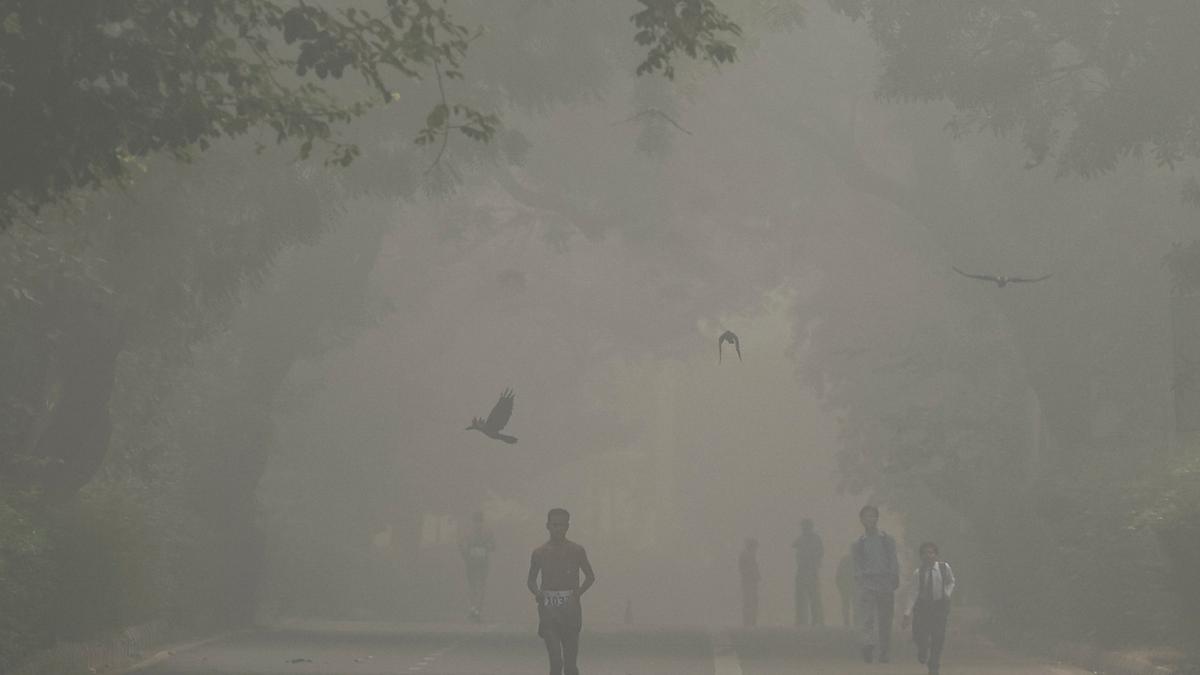
- 19 Nov 2024
In News:
As Delhi’s AQI worsened, the Commission for Air Quality Management issued the order to activate Stage-IV of the Graded Response Action Plan.
Restrictions Under GRAP-IV in Delhi-NCR
- Truck Movement:
- Banned except for essential goods and trucks using clean fuels (LNG, CNG, BS-VI diesel, or electric).
- Non-essential light commercial vehicles registered outside Delhi are also banned unless they are CNG or BS-VI diesel or electric vehicles (EVs).
- Delhi-registered BS-IV or older diesel vehicles (medium and heavy goods vehicles) are banned, except for those in essential services.
- Construction Activities:Suspension of all construction work, including public projects like highways, roads, flyovers, power lines, pipelines, etc.
- Schools and Work:
- Online classes for students of Classes 6 to 9 and Class 11.
- Work from home (WFH) recommendations for 50% office capacity in NCR.
- Central government employees may also be asked to work from home.
- Offline classes for Classes 10 and 12 continue, but schools for other classes must shift to online mode.
- Other Measures:
- State governments may impose additional measures such as:
- Closure of colleges.
- Odd-even vehicle scheme.
- Restrictions on non-essential commercial activities.
- State governments may impose additional measures such as:
About GRAP (Graded Response Action Plan)
- Purpose: A plan to reduce air pollution in the Delhi-NCR region based on AQI levels.
- Approved By: Supreme Court in 2016 (M.C. Mehta v. Union of India).
- Notified by MoEFCC: 2017.
- Implementation Authority: CAQM (Commission for Air Quality Management).
Stages of GRAP
GRAP is an incremental system, with measures activated as air quality deteriorates:
- Stage 1: Poor AQI (201-300) – Basic pollution control measures.
- Stage 2: Very Poor AQI (301-400) – Enhanced measures.
- Stage 3: Severe AQI (401-450) – Stricter actions like shutting down industries.
- Stage 4: Severe Plus AQI (Above 450) – Most stringent restrictions, as activated on November 18, 2024.
Air Quality Index (AQI)
- Introduced: 2014, by Central Pollution Control Board (CPCB).
- Categories:
- Good: 0-50
- Satisfactory: 51-100
- Moderately Polluted: 101-200
- Poor: 201-300
- Very Poor: 301-400
- Severe: 401-450
- Severe Plus: 451 and above (current status in Delhi).
- Pollutants Considered: PM10, PM2.5, NO?, SO?, CO, O?, NH?, and Pb.
- Measurement: 24-hour average values for PMs, and 8-hour averages for CO and O?.
Commission for Air Quality Management (CAQM)
- Established: Under the Commission for Air Quality Management in National Capital Region (NCR) Act, 2021.
- Mandate: To coordinate, research, and manage air quality issues in the NCR and adjoining areas.
- Composition: Includes government officials, technical experts, and NGO representatives.
- Jurisdiction: Covers Delhi and parts of Haryana, Uttar Pradesh, and Rajasthan.
Nepal-Bangladesh Power Transfer via India
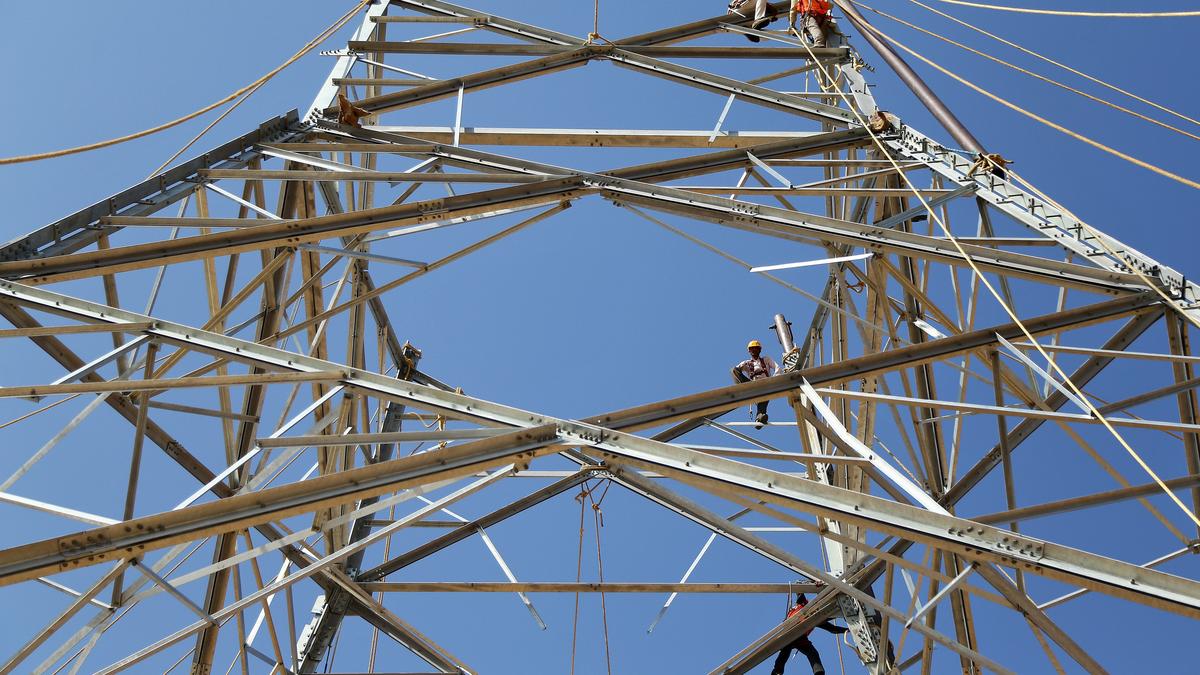
- 19 Nov 2024
In News:
Nepal starts exporting energy to Bangladesh with Indian grid support.
Significance of the Power Transfer:
- Energy Cooperation:
- A major step in regional energy cooperation among Nepal, India, and Bangladesh.
- Strengthens sub-regional connectivity in the power sector.
- Nepal’s Hydropower Potential:
- Nepal, a Himalayan nation, possesses untapped hydropower resources, and this agreement opens the door for future cross-border electricity cooperation.
- Nepal’s energy exports are a green energy initiative, supporting sustainable industrial growth in Bangladesh and regional prosperity.
- Electricity Crisis in Bangladesh:
- Bangladesh is facing an ongoing electricity shortage, worsened by the suspension of power supply from Adani’s Godda plant and the maintenance of the Payra thermal unit.
- The addition of 40 MW of Nepalese hydroelectric power aims to alleviate the energy shortfall in Bangladesh.
Tripartite Power Sales Agreement:
- Agreement Details:
- The agreement for power transfer was signed in October 2023 between:
- NTPC Vidyut Vyapar Nigam (NVVN) (India)
- Nepal Electricity Authority (NEA) (Nepal)
- Bangladesh Power Development Board (BPDB) (Bangladesh).
- Power Export: Nepal has started exporting 40 MW of electricity, which marks a significant milestone in trilateral power cooperation.
- The agreement for power transfer was signed in October 2023 between:
Key Entities Involved:
- NTPC Vidyut Vyapar Nigam (NVVN):
- A wholly owned subsidiary of NTPC Ltd. (National Thermal Power Corporation), created to facilitate power trading.
- NVVN is diversifying into renewables, e-mobility, and green fuel solutions.
- NTPC Ltd.:
- A Maharatna PSU under India’s Ministry of Power, established to develop power resources in India.
- Involved in large-scale power generation and clean energy initiatives
Unified Complex Radio Antenna
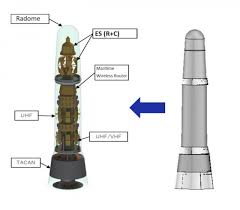
- 17 Nov 2024
In News:
- India and Japan recently signed a Memorandum of Implementation (MoI) to co-develop the UNICORN (Unified Complex Radio Antenna) mast for deployment on Indian Navy ships. This pact marks a significant milestone as it is India's first military technology transfer agreement with Japan.
- The deal follows a 2015 agreement on the transfer of defense equipment and technology, further strengthening defense ties between the two countries.
- The UNICORN mast is a cutting-edge communication and radar system designed to enhance the stealth characteristics of naval vessels. This agreement is seen as an important step towards deepening India-Japan defense cooperation.
What is UNICORN?
The UNICORN mast is an advanced, integrated antenna system that combines several communication and radar components into a single conical structure or radome (a radar-absorbing dome). It is designed to reduce the radar cross-section (RCS) of ships, improving their stealth capabilities.
Key features of the UNICORN mast include:
- Integration of multiple antennas: It consolidates various antennas used for tactical data links, communications, and navigation systems (e.g., TACAN - Tactical Air Navigation System).
- Stealth enhancement: By reducing the number of exposed components and consolidating them into a single radome, the mast significantly lowers the ship’s radar signature, making it harder to detect.
- Improved performance: The mast design minimizes mutual interference between antennas, enhances maintainability, and increases lightning resistance.
- Space efficiency: It saves valuable below-deck space and reduces ship-building time by integrating multiple systems into one mast.
The UNICORN system is currently deployed on Mogami-class frigates of the Japan Maritime Self-Defence Force.
India-Japan Defense Cooperation
- 2015 Defense Technology Transfer Agreement: This pact established a framework for defense cooperation between India and Japan, paving the way for joint projects like the UNICORN mast.
- Bilateral Military Exercises:
- Veer Guardian 2023: A bilateral exercise conducted between the Japan Air Self Defence Force (JASDF) and the Indian Air Force (IAF), which deepened defense interoperability between the two nations.
- Tarang Shakti 2024: The first multilateral air exercise hosted by the Indian Air Force, with Japanese fighter aircraft participating.
- Andaman and Nicobar Islands Development: Japan has also provided financial aid for infrastructure development in India’s strategically located Andaman and Nicobar Islands, contributing to enhancing India’s maritime security in the region.
Bali Jatra Cuttack Utsav 2024
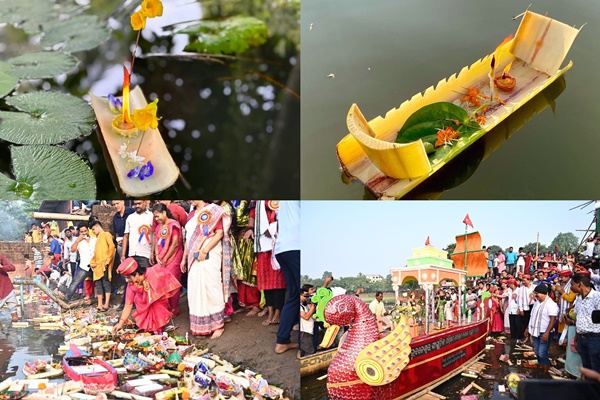
- 17 Nov 2024
In News:
- Bali Jatra 2024 is being held from November 15 to November 22 in Cuttack, Odisha.
- The festival celebrates Odisha’s ancient maritime history and its cultural and trade links with Southeast Asia.
- The event has gained international attention due to the participation of diplomats and cultural troupes from ASEAN, BIMSTEC, and Pacific Island countries.
Historical and Cultural Significance:
- Bali Jatra ("Voyage to Bali") commemorates the 2,000-year-old maritime trade routes between ancient Kalinga (modern-day Odisha) and Southeast Asia, including regions like Bali, Java, Sumatra, Borneo, Burma (Myanmar), and Sri Lanka.
- The festival honors the skills of Kalinga sailors who contributed to the prosperity of the region through trade, including commodities like pepper, cinnamon, cardamom, silk, camphor, gold, and jewelry.
- It highlights Odisha’s maritime legacy and the cultural exchanges between India and Southeast Asia, particularly the cultural influence of Odia merchants on Bali.
Commercial and Economic Aspects:
- Bali Jatra is Asia’s largest open-air trade fair, featuring over 2,500 stalls selling a variety of products including artisanal crafts, household items, and food.
- The event is a major commercial activity with business transactions estimated to exceed ?100 crore over the course of the festival.
- The festival provides an opportunity for both local and national traders to exhibit products at competitive prices.
Cultural Performances and International Participation:
- The festival includes daily cultural performances showcasing Odissi dance, Chhau dance, Bihu, Mahari, Gotipua, Sambalpuri, and Santali folk dances.
- This year, cultural troupes from countries like Indonesia, Thailand, and Sri Lanka have participated, enhancing the international profile of the festival.
- Diplomats, including Ambassadors, High Commissioners, and Heads of Mission from 14 countries attended the inaugural ceremony.
Historical Background of Bali Jatra:
- The festival is linked to Kartika Purnima, the full moon night of the month of Kartika, marking the annual migration of traders from Odisha to Southeast Asia.
- Traders used boats called Boitas to travel to distant lands, which is now symbolically represented in the festival.
- The event’s cultural significance extends to the recognition of Odisha’s historic maritime routes, with ports like Tamralipti, Manikpatna, Chelitalo, Palur, and Pithunda playing key roles in global trade from as early as the 4th century BC.
Kalinga's Maritime Influence:
- The Kalinga Empire (present-day Odisha) had significant influence over the Bay of Bengal, referred to as the Kalinga Sea.
- Kalinga’s dominance in maritime trade is reflected in Kalidasa's Raghuvamsa, where the King of Kalinga is called "Lord of the Sea."
- Kalinga's Boitas (ships) were instrumental in connecting India with the Southeast Asian archipelago, including Bali.
Cultural Linkages with Bali:
- Odisha's trade with Bali influenced the culture, religion, and architecture of the region.
- Balinese Hinduism today still reflects Indian influences, with worship of Hindu deities like Shiva, Vishnu, Brahma, and Ganesha.
- The MasakapankeTukad festival in Bali, similar to Bali Jatra in Odisha, is a tribute to the maritime ancestors of Bali and commemorates the long-standing cultural ties.
Recognition and Milestones:
- Bali Jatra 2022 achieved a Guinness World Record for creating the largest collection of origami sculptures.
- The festival has evolved from a traditional trade fair to an international cultural event that highlights Odisha’s historical role in global trade and cultural exchanges.
Commemoration of Birsa Munda’s 150th Birth Anniversary
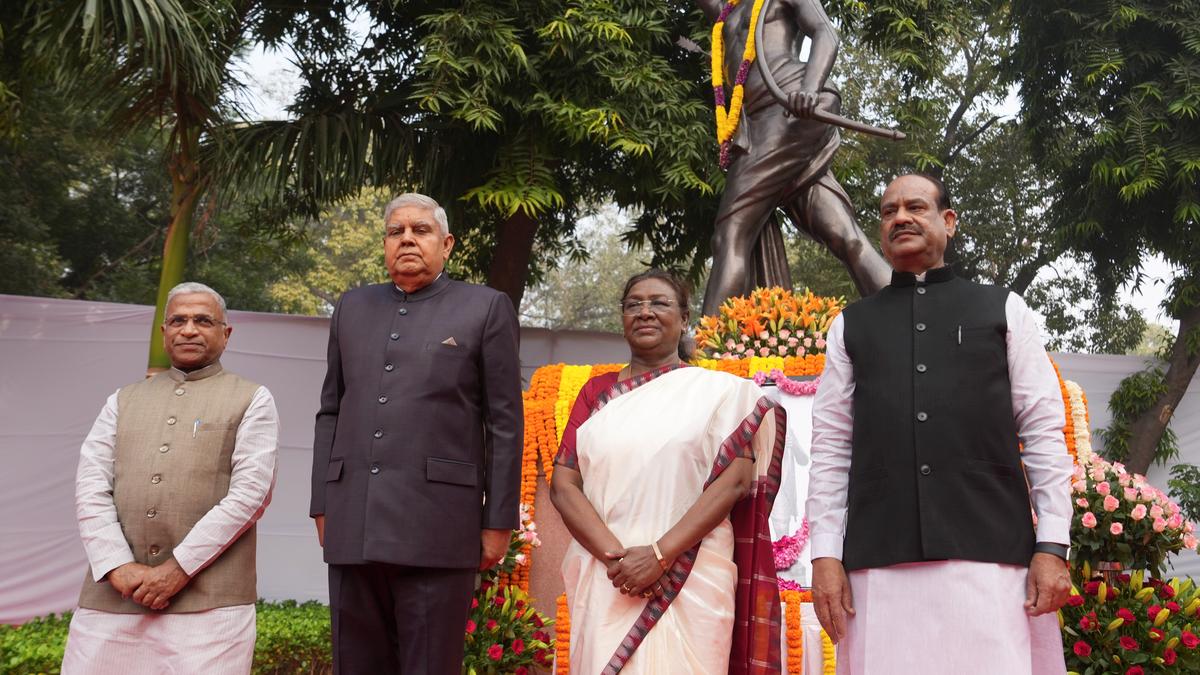
- 16 Nov 2024
In News:
On November 15, 2024, Prime Minister Narendra Modi launched a commemorative stamp and coin to mark the 150th birth anniversary of Birsa Munda, a prominent tribal freedom fighter and leader from Jharkhand.
Key Points about Birsa Munda:
- Iconic Tribal Leader: Birsa Munda, born in 1875, is often referred to as ‘Bhagwan’ (God) and ‘DhartiAaba’ (Father of the Earth) by the tribal communities. He is celebrated for his leadership in the fight against the exploitation of tribal people by both the British and non-tribal settlers.
- Ulgulan Movement: Birsa Munda led the Ulgulan (Great Tumult) against the alienation of land, forced labour, and the illegal appropriation of tribal land in the Chotanagpur Plateau. His efforts were critical in mobilizing tribal communities and challenging the colonial order.
- Religious and Social Reformer: He founded the Birsait faith, focusing on spiritual practices that emphasized prayer, worship of God, and abstaining from alcohol, fostering unity and resilience among tribal communities.
- Death and Legacy: Birsa Munda died in 1900 in British custody at the young age of 25. Despite his early death, his legacy lives on as a symbol of tribal pride and resistance.
- Janjatiya Gaurav Diwas: Since 2021, the Government of India observes November 15 as Janjatiya Gaurav Diwas (Tribal Pride Day) in honor of Birsa Munda's birth anniversary, recognizing the contributions of tribal communities and their role in India's history.
- Highlights of the 2024 Commemoration:
- Commemorative Stamp and Coin: To mark the 150th birth anniversary, the Prime Minister unveiled a commemorative stamp and coin in Bihar's Jamui district. This serves as a tribute to Munda's sacrifices for the country.
- Year-Long Celebrations: The 2024 event marks the beginning of year-long celebrations to commemorate Birsa Munda’s legacy, with a focus on tribal welfare and recognition of their historical contributions.
- Welfare Projects and Initiatives:
- Prime Minister Modi inaugurated and laid the foundation for tribal welfare projects worth over ?6,640 crore.
- The PM launched two tribal freedom fighter museums and tribal research institutes.
- 1.16 lakh homes were sanctioned under the Dharti Aba Janjati Gram Utkarsh Yojana.
- 25,000 homes for Particularly Vulnerable Tribal Groups (PVTGs) were approved under the Pradhan Mantri Janjati Adivasi Nyaya Maha Abhiyan (PM-JANMAN) scheme.
- The launch of 50 mobile medical units aims to improve healthcare access in tribal regions.
- 10 Eklavya Model Residential Schools (EMRS) were inaugurated to promote education for tribal students.
- DhartiAabaJanjatiya Gram Utkarsh Abhiyan:
- The DhartiAabaJanjatiya Gram Utkarsh Abhiyan aims to address gaps in social infrastructure, health, education, and livelihood in tribal-majority villages.
- The initiative is being implemented across 63,000 villages with the involvement of 17 ministries and departments.
- PM-JANMAN Scheme for PVTGs:
- Launched in November 2023, the PM-JANMAN initiative aims to uplift Particularly Vulnerable Tribal Groups (PVTGs) through various interventions like safe housing, clean drinking water, healthcare, education, and sustainable livelihoods. The scheme also supports Van Dhan Vikas Kendras for the trade of forest produce and solar-powered systems for households in tribal areas.
Partnerships for Accelerated Innovation and Research (PAIR)
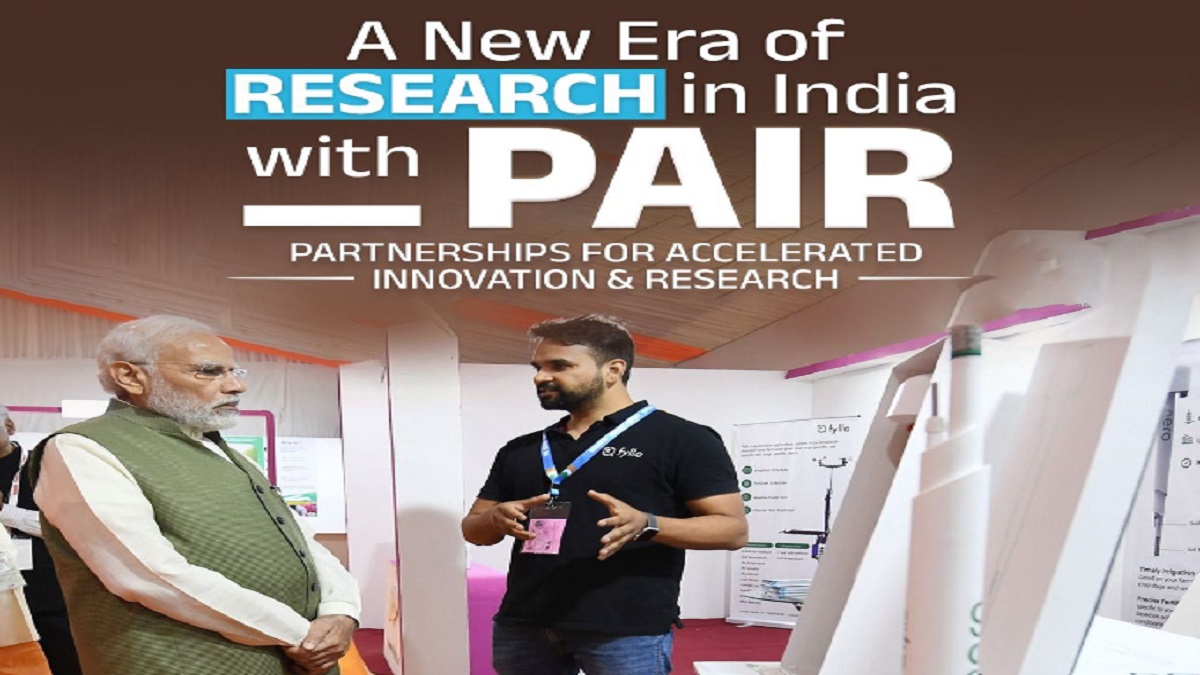
- 16 Nov 2024
In News:
The Anusandhan National Research Foundation (ANRF) has launched the Partnerships for Accelerated Innovation and Research (PAIR) program to significantly boost research and innovation across Indian universities, especially those with limited research infrastructure. The program is designed to bring about a transformative change in India's academic research ecosystem, aligning with the broader goals of the National Education Policy (NEP) 2020.
Key Details:
- Launch Date: November 2024
- Ministry/Department: Department of Science and Technology (DST)
- Objective:
- To elevate research capabilities in universities that have limited resources by pairing them with well-established, top-tier institutions.
- To foster collaborations that can help these emerging universities enhance their research quality, drive innovation, and make significant, globally competitive research contributions.
- Operational Model: Hub-and-Spoke Framework
- Hub Institutions: These are well-established, top-tier institutions that will serve as mentors to less-researched universities. The hubs will be selected from:
- The top 25 institutions in the National Institutional Ranking Framework (NIRF).
- Institutions of National Importance ranked in the top 50 NIRF.
- Spoke Institutions: These are emerging universities or institutions with limited research infrastructure. These will include:
- Central and State Public Universities ranked within the top 200 NIRF Overall.
- Top 100 NIRF University/State Public Universities.
- Select NITs and IIITs.
- Hub Institutions: These are well-established, top-tier institutions that will serve as mentors to less-researched universities. The hubs will be selected from:
- Funding:
- The program has a budget allocation of up to ?100 crore per PAIR network.
- Distribution of Funds:
- 30% for the Hub institution.
- 70% for the Spoke institutions.
- Private Institutions serving as hubs will need to contribute 25% of their allocated budget.
- Mentorship & Research Focus:
- Hubs will provide mentorship to spoke institutions, guiding them in various aspects of research such as access to resources, advanced infrastructure, and best practices.
- The collaboration is expected to enhance research capabilities, foster innovation, and encourage the development of collaborative networks across institutions.
- Regional Diversity & Inclusion:
- The program ensures regional diversity, with at least one spoke institution located outside the hub's state.
- It also allows the inclusion of one promising university from Category III institutions that may not meet the eligibility criteria but show potential for growth in research.
- Phase-wise Rollout:
- The first phase will focus on institutions ranked within the top 25 NIRF and Institutions of National Importance.
- Future phases will expand the scope, allowing more universities and institutions to participate.
- Goals Aligned with NEP 2020:
- Fostering Research Excellence: By partnering top institutions with emerging ones, PAIR seeks to improve the quality of research in India’s higher education sector.
- Promoting Regional Diversity: Ensuring a geographically diverse set of institutions participate in the research ecosystem.
- Strengthening Innovation: Helping universities in less-researched areas to compete on an international level, particularly in cutting-edge and impactful research.
- Program Implementation:
- Prospective Program Directors from eligible Hub institutions are invited to apply online for the program at ANRF PAIR Application Portal.
About ANRF:
- ANRF was established under the ANRF Act 2023 as an apex body to provide strategic direction for scientific research in India.
- With the formation of ANRF, the Science and Engineering Research Board (SERB), previously established under an act of Parliament in 2008, has been subsumed into ANRF.
Operation Dronagiri
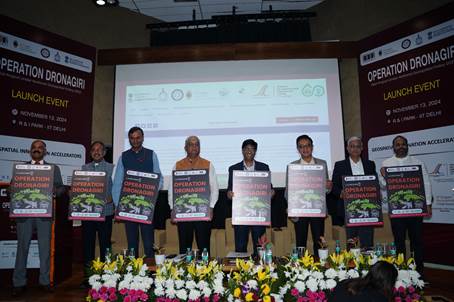
- 15 Nov 2024
In News:
- Recently, the Operation Dronagiri, launched under the National Geospatial Policy 2022 by the Department of Science and Technology (DST).
- Objective: It is a pilot project under India’s National Geospatial Policy 2022 aimed at showcasing the potential of geospatial technologies in sectors such as Agriculture, Livelihoods, and Logistics & Transport to improve quality of life and ease of doing business.
- Implementation:
- The first phase will cover five states: Uttar Pradesh, Haryana, Assam, Andhra Pradesh, and Maharashtra.
- Sectors Targeted: The focus will be on demonstrating the integration of geospatial data to solve real-world challenges in agriculture, transportation, and livelihoods.
National Geospatial Policy 2022
- Context: The National Geospatial Policy 2022 is aimed at liberalizing geospatial data and enabling widespread access and use of geospatial technologies across various sectors of governance, business, and development.
- Goals:
- Development of Geospatial Infrastructure: Promoting the creation of a robust infrastructure to make spatial data more accessible and usable.
- Geospatial Skill Development: Focus on creating a workforce proficient in geospatial technologies.
- Implementation of Standards: Establishing clear standards for geospatial data to ensure consistency and interoperability.
Role of Integrated Geospatial Data Sharing Interface (GDI)
- Launch: Alongside Operation Dronagiri, the Integrated Geospatial Data Sharing Interface (GDI) was also unveiled.
- Purpose: GDI is designed to facilitate seamless data sharing, access, and analysis of geospatial data.
- Key Features:
- Data Exchange: Enables smooth sharing of geospatial data for urban planning, disaster management, and environmental monitoring.
- Privacy and Security: Built with advanced data exchange protocols and privacy-preserving features to ensure secure data sharing.
- Collaboration: It will promote collaboration among stakeholders, including government agencies, industry, and startups, to unlock actionable insights for decision-making.
- Key Features:
Potential Applications of Geospatial Data
- Urban Planning: Assisting cities in designing efficient infrastructure.
- Disaster Management: Providing real-time data for better disaster response.
- Environmental Monitoring: Supporting initiatives for environmental protection and sustainability.
- Agriculture: Precision farming, crop monitoring, and improving supply chains.
- Logistics & Transport: Streamlining transportation networks, reducing traffic, and improving delivery systems.
Grand Challenge for Startups
- Objective: A Grand Challenge was announced as part of the initiative to support startups in developing Proofs of Concept (POCs) targeting specific problems in the focus sectors.
- Role of Startups: The challenge encourages innovation by early-stage and growth-stage startups in geospatial technology, offering mentorship, resources, and access to datasets.
- Geospatial Innovation Accelerators:
- The Geospatial Innovation Accelerators (GIAs) at prestigious institutions like IIT Kanpur, IIT Bombay, IIM Calcutta, and IIT Ropar will support this effort.
- Mentorship and Resources: These accelerators will provide the necessary support for startups to turn their innovations into scalable solutions.
Key Stakeholders and Operational Arms
- Geospatial Innovation Cell (DST): Responsible for overseeing the project’s implementation and execution.
- Navavishkar I-Hub Foundation (IITTNiF): Will manage the operational activities of Operation Dronagiri.
- Partnering Institutions: GIAs at IIT Kanpur, IIT Bombay, IIM Calcutta, and IIT Ropar will be the operational arms.
- Private Sector Involvement: Significant involvement of private sector companies, including startups, is crucial to ensuring the success and scalability of the project.
Impact and Significance
- Socioeconomic Benefits: The integration of geospatial data into agriculture, transport, and logistics will improve efficiency, reduce costs, and boost economic activity in critical sectors.
- Geospatial Innovation: The initiative marks a significant step towards making India a global leader in geospatial technology and positioning the country as a hub for innovative solutions using geospatial data.
- Government Engagement: The project will involve various government departments and corporates in a public-private partnership (PPP) model, similar to the successful implementation of the UPI payment system.
Mobility Arrangement for Talented Early-professionals Scheme (MATES)
- 15 Nov 2024
In News:
Australia has come up with a new scheme that allows talented young people from India to work in the country for some time.
What is the MATES Scheme?
- Full Name: Mobility Arrangement for Talented Early-professionals Scheme (MATES).
- Objective: To provide Indian university graduates and early-career professionals with an opportunity to live and work in Australia for up to two years.
- Establishment: The scheme is part of the Migration and Mobility Partnership Arrangement (MMPA) between Australia and India, signed on May 23, 2023.
- Launch Date: MATES will open for applicants in December 2024.
Eligibility Criteria
- Age: Applicants must be 30 years or younger at the time of application.
- Educational Qualifications: Must have graduated within the last two years from an eligible institution with a Bachelor’s degree or higher in one of the following fields:
- Renewable Energy
- Mining
- Engineering
- Information Communications Technology (ICT)
- Artificial Intelligence (AI)
- Financial Technology (FinTech)
- Agricultural Technology (AgriTech)
- English Proficiency: A minimum score of 6 overall in IELTS (or equivalent), with at least 5 in each module.
- Institutional Criteria: Graduates must be from the top 100 Indian universities as per the NIRF Ranking 2024 (e.g., Panjab University, Chandigarh University, Thapar Institute of Engineering, Lovely Professional University).
- Previous Participation: Applicants must not have previously participated in the MATES scheme.
Key Features of the MATES Scheme
- No Employer Sponsorship Required: Applicants are not required to have sponsorship from an Australian employer.
- Visa Duration: The visa allows a stay of up to 2 years in Australia, with multiple entries permitted.
- Dependents: Visa holders can bring dependents (spouse and children). Dependents will have work rights in Australia but will not count towards the annual cap.
- Visa Application Process:
- The visa will be granted through a ballot system (random selection).
- Application Fee: AUD 25.
- Shortlisted candidates will proceed to further formalities.
Program Features
- Targeted Sectors: MATES focuses on key sectors such as renewable energy, mining, engineering, ICT, AI, FinTech, and AgriTech, aligning with Australia’s demand for skilled professionals in these areas.
- Pilot Program: Initially, the scheme will offer 3,000 places per year for primary applicants.
- Work Flexibility: While the visa does not require applicants to work in their nominated field, it is designed to help young professionals expand their skills and network in Australia’s key industries.
Additional Benefits
- Career Development: Participants will gain international work experience, expanding their professional network and skills.
- Cultural Exchange: The scheme also promotes cultural exchange between India and Australia, fostering stronger bilateral relations.
- Pathway for Future Opportunities: Participants may apply for further temporary or permanent residence in Australia, provided they meet the eligibility requirements.
Impact and Significance
- Bilateral Cooperation: The MMPA, under which MATES is established, enhances migration and mobility between India and Australia while addressing concerns related to illegal migration.
- Youth Empowerment: The scheme offers young professionals a platform to develop their careers internationally, particularly in sectors of global relevance like AI, FinTech, and renewable energy.
- Skill Development: MATES aims to bridge skill gaps in Australia by attracting Indian professionals to key sectors where expertise is in high demand.
- Global Talent Mobility: This scheme supports the global mobility of young talent and strengthens the India-Australia economic and educational partnership.
Operation Kawach
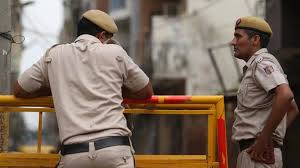
- 15 Nov 2024
In News:
The Delhi Police recently initiated Operation Kawach, arresting and detaining around 1,000 people in an attempt to crack down on various gangs and their operations in the wake of the recent incidents of shootings reported in the city.
Overview of Operation Kawach
- Objective: A crackdown on gang-related violence, drug trafficking, and other illegal activities like possession of firearms, banned drugs, and liquor.
- Agencies Involved:Delhi Police (Local Police, Special Cell, and Crime Branch)
- Duration: Initiated on November 12, 2024 (5 PM) and continued until November 13, 2024 (5 PM).
Key Details of the Operation
- Arrests and Detentions:
- Around 1,000 people detained.
- 486 people apprehended in Outer North Delhi (20% juveniles).
- Arrests made in Dwarka, Southwest, and North Delhi.
- Key Gangs Targeted:
- Associated with notorious gangs led by Lawrence Bishnoi, Neeraj Bawana, Kaushal Chaudhary, TilluTajpuria, Kala Jatheri, Manjeet Mahal, and Nandu gangs.
- Charges: Involvement in activities like:
- Possession of illegal firearms.
- Trafficking of liquor and banned drugs (NDPS Act).
- Theft and other criminal activities.
Significance of Operation Kawach
- Public Safety: Aimed at dismantling organized crime networks to enhance safety and reduce violence in Delhi.
- Impact on Gangs: Directly targets high-profile criminals, including those involved in gang wars and drug trafficking.
- Strategic Law Enforcement: Strengthens law enforcement capabilities, working in coordination across multiple police units.
Decline in African Elephant Population
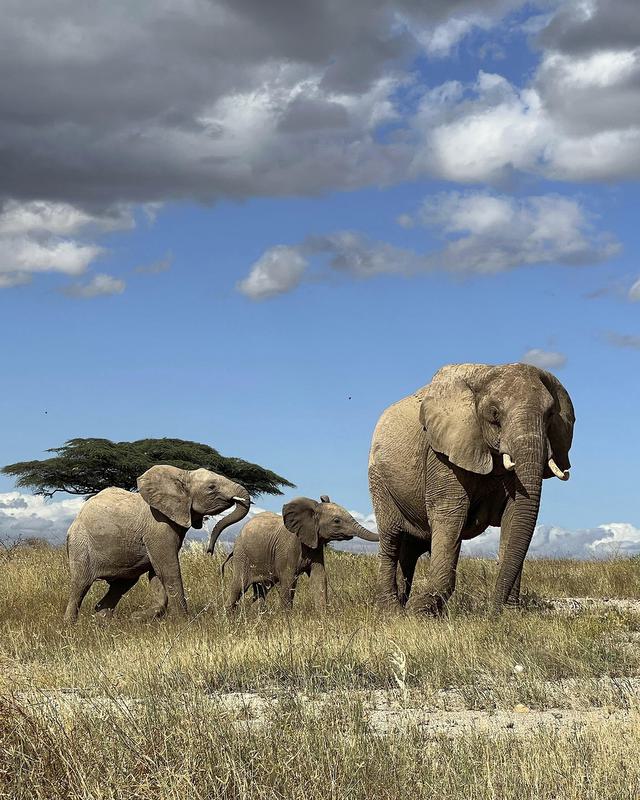
- 14 Nov 2024
In News:
- The population of African elephants has been declining rapidly, with data showing alarming drops across the African continent.
- Survey Period: The study covers population data from 475 sites in 37 countries over 52 years (1964-2016).
- Population Decrease:
- Savannah Elephants: A 70% decline on average across surveyed sites.
- Forest Elephants: A 90% decline on average across surveyed sites.
- Overall Impact: The study indicates a 77% average decline in elephant populations across both species.
Main Drivers of Decline
- Poaching: Illegal hunting for ivory and other body parts remains a major threat.
- Habitat Loss: Urbanization, agricultural expansion, and climate change are encroaching on the elephant’s natural habitats.
- Human-Elephant Conflict: Increased human settlements near elephant habitats lead to conflicts, further endangering elephant populations.
Species Overview
- Two Subspecies:
- Savannah Elephant (Loxodonta africana): Larger and more common, found in open savannas.
- Forest Elephant (Loxodonta cyclotis): Smaller and more elusive, found in dense rainforests.
- Conservation Status:
- Savannah Elephant: Endangered (IUCN).
- Forest Elephant: Critically Endangered (IUCN).
- CITES Listing: Both species are listed under CITES Appendix I, which bans international trade in endangered species.
Regional Impact
- Northern and Eastern Africa: These regions have seen drastic declines, particularly in the Sahel (Mali, Chad, Nigeria), where elephants have been extirpated (locally extinct) due to poaching and insufficient protection.
- Southern Africa: Positive Growth in some areas, particularly in Botswana, Zimbabwe, and Namibia, where elephant populations are growing due to strong conservation efforts.
Conservation Success
- Southern Africa: 42% of the surveyed sites showed increasing elephant populations, a testament to successful conservation strategies.
- Government and NGO Efforts: Successful population growth is often attributed to active management, including anti-poaching laws, protected areas, and conservation funding.
Elephant Behavior and Reproduction
- Social Structure: Elephants live in family units led by mature females, with strong social bonds.
- Low Sleep Time: Elephants sleep only 2 hours per day on average.
- Reproduction: They have a long gestation period of up to 2 years, and calves are cared for by mothers and allomothers (non-mother females).
Conservation Challenges
- Sustainability: Continued poaching and habitat destruction threaten to undo gains made in conservation.
- Fragmentation of Populations: With many elephants in isolated pockets, genetic diversity is declining, which could lead to long-term problems for species survival.
Global Nature Conservation Index (NCI) 2024
- 13 Nov 2024
In News:
India with an abysmal score of 45.5 (out of 100) has been ranked 176th in the Global Nature Conservation Index, 2024.
Key Highlights:
- India's Ranking:
- Ranked 176th out of 180 countries in the 2024 Global Nature Conservation Index (NCI).
- India is listed among the five worst performers, along with Kiribati (180), Turkey (179), Iraq (178), and Micronesia (177).
- Score: 45.5 out of 100, indicating significant conservation challenges.
- Key Factors Contributing to Low Rank:
- Inefficient land management practices.
- Rising threats to biodiversity, exacerbated by unsustainable development and climate change.
- Four Key Markers Assessed by the NCI:
- Land Management: Ineffective management leading to significant land conversion.
- Threats to Biodiversity: Habitat loss, fragmentation, and deforestation.
- Capacity and Governance: Need for stronger political will and better enforcement of conservation laws.
- Future Trends: Growing pressure from population density, climate change, and illegal wildlife trade.
- Sustainable Land Use Concerns:
- 53% of land has been converted for urban, industrial, and agricultural purposes.
- High use of pesticides and concerns over soil pollution.
- Sustainable nitrogen index of 0.77 indicates significant risks to soil health.
- Marine Conservation Issues:
- Only 0.2% of India’s national waterways are under protected areas, with no protected areas within its Exclusive Economic Zone (EEZ).
- Significant improvements needed in marine conservation despite 7.5% of terrestrial areas being protected.
- Deforestation and Habitat Loss:
- 23,300 sq. km of tree cover lost between 2001-2019 due to deforestation.
- Habitat fragmentation from agriculture, urbanization, and infrastructure development.
- Impact of climate change on sensitive ecosystems like alpine regions and coral reefs.
- Biodiversity Decline:
- Despite 40% of marine species and 65% of terrestrial species being within Protected Areas (PAs), many species continue to face population decline.
- 67.5% of marine species and 46.9% of terrestrial species are still experiencing population declines.
- Illegal Wildlife Trade:
- India is the fourth-largest illegal wildlife trading nation globally, with an estimated annual trade value of £15 billion.
- The NCI emphasizes the need for stronger enforcement and international cooperation to combat wildlife trafficking.
- Ecological Wealth Under Threat:
- India’s high population density (with a population that has doubled since the late 1970s) continues to put pressure on its ecological wealth.
- The country faces significant biodiversity challenges due to overpopulation and unsustainable development.
- Recommendations and Optimism:
- The NCI stresses the need for strong political will and commitment to sustainable development.
- India can improve its rank by strengthening conservation laws, improving governance, and securing funding for environmental initiatives.
- The NCI remains optimistic about India’s potential to address its conservation challenges and achieve more sustainable outcomes in the future.
- About the Nature Conservation Index (NCI):
- Developed by: Goldman Sonnenfeldt School of Sustainability and Climate Change (Ben-Gurion University) and BioDB.com (a biodiversity database).
- Purpose: Evaluates the conservation efforts of countries, using a data-driven approach to balance conservation and development.
- Key Focus Areas: Land management, biodiversity threats, governance, and future sustainability trends.
RBI's New Framework for Reclassification of FPI to FDI
- 13 Nov 2024
In News:
The Reserve Bank of India (RBI) directed foreign portfolio investors (FPIs) to obtain necessary approvals from the government and concurrence from the investee companies when their equity holdings go beyond the prescribed limits and they reclassify the holdings as foreign direct investment (FDI).
- Approval Requirement:
- FPIs (Foreign Portfolio Investors) must obtain necessary government approvals when reclassifying their foreign portfolio investments (FPIs) into Foreign Direct Investment (FDI).
- Approvals are mandatory, including those related to investments from countries sharing a land border with India.
- Investment Limits:
- According to FEMA (NDI) Rules, 2019, an FPI’s investment in an Indian company should not exceed 10% of the total paid-up equity capital (on a fully diluted basis).
- If the FPI exceeds this limit, it has 5 trading days from the settlement of trades to either divest or reclassify the excess holdings as FDI.
- Restrictions on Reclassification:
- Reclassification to FDI is not allowed in sectors where FDI is prohibited.
- FPIs must ensure compliance with FDI norms, such as entry routes, sectoral caps, investment limits, pricing guidelines, and other related conditions.
- Concurrence from Investee Companies:
- The FPI must obtain the concurrence of the investee company for reclassifying the investment into FDI.
- This ensures that the company adheres to conditions related to prohibited sectors, sectoral caps, and government approvals.
- Reclassification Procedure:
- The FPI must clearly state its intent to reclassify the investment to FDI and provide the necessary approvals and concurrence to its custodian.
- The custodian is responsible for freezing the FPI's purchase transactions in the investee company’s equity instruments until the reclassification is complete.
- Regulatory Adherence:
- The reclassification must follow the relevant provisions for FDI, including compliance with the Foreign Exchange Management Act (FEMA) and FDI guidelines.
Accessibility for Disabled Persons
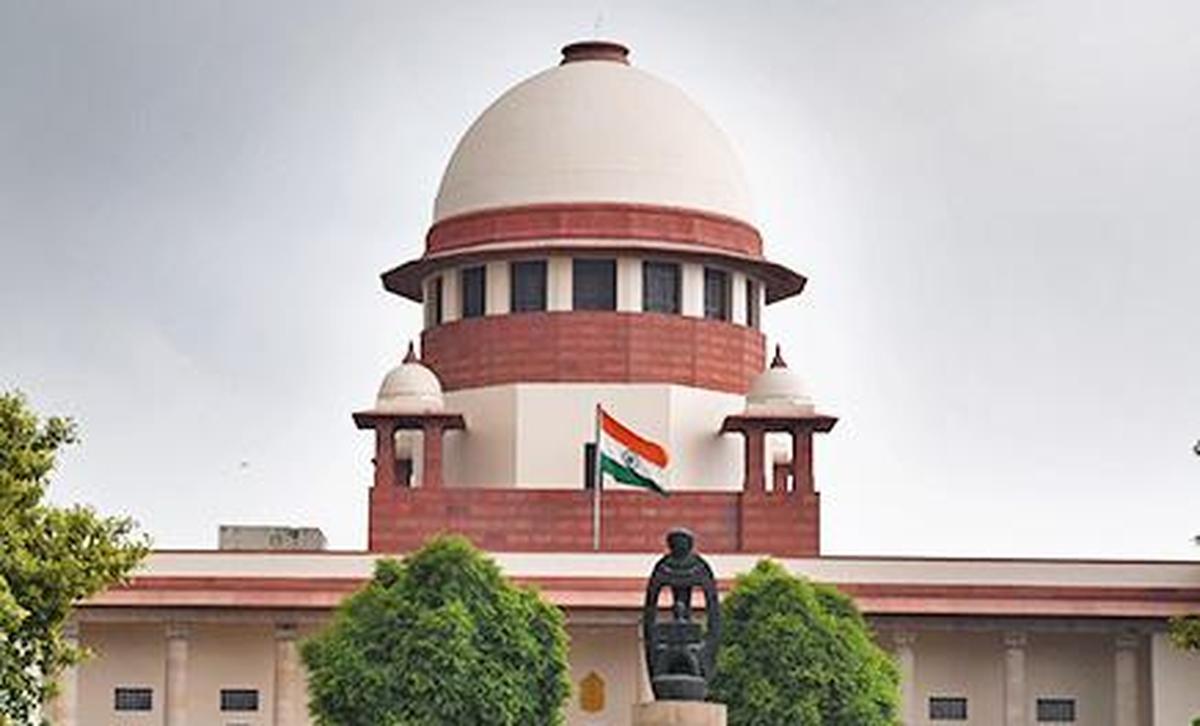
- 13 Nov 2024
In News:
Recently, the Supreme Court of India delivered a significant ruling affirming that the right of persons with disabilities (PwDs) to access environments, services, and opportunities is a fundamental human right. The judgment was made in the case of RajiveRaturi vs. Union of India &Ors. and is based on a report submitted by the Centre for Disability Studies (CDS) at NALSAR University of Law.
Key Points of the Judgment:
- Social Model of Disability:
- The Court upheld the social model of disability, which focuses on societal changes to ensure the full inclusion and participation of PwDs.
- The model emphasizes removing social barriers and creating an inclusive environment that accommodates all disabilities.
- Challenges Faced by PwDs: The ruling highlighted various challenges faced by PwDs, as identified in the CDS NALSAR report:
- Accessibility Barriers: Significant gaps exist in accessibility measures across public spaces such as courts, prisons, schools, and public transport.
- Intersectionality & Compounded Discrimination: PwDs often face multiple layers of discrimination, such as caste, gender, and socio-economic status, which compound their marginalization.
- Inconsistent Legal Framework: The RPwD Act (2016) mandates mandatory compliance for accessibility standards, but Rule 15 under RPwD Rules (2017) only offers self-regulatory guidelines, which the Court found insufficient.
- Court's Analysis of Rule 15:
- The Court declared Rule 15(1) of the RPwD Rules, 2017, as ultra vires, meaning it is inconsistent with the mandatory compliance intended by the RPwD Act.
- The Court stressed the need for stronger legal and regulatory enforcement to ensure access for PwDs.
- Principles of Accessibility: The Court outlined several essential principles for achieving accessibility:
- Universal Design: Environments and services should be universally accessible to all, including PwDs.
- Comprehensive Inclusion: All types of disabilities, both visible and invisible, should be addressed.
- Assistive Technology Integration: Using technology to support PwDs in daily activities.
- Stakeholder Consultation: PwDs and disability advocacy groups must be consulted in planning and designing accessible spaces.
- Two-Pronged Approach:
- The Court recommended a two-pronged approach:
- Ensure accessibility in existing infrastructure: Modify and update current institutions and services to become accessible.
- Design future infrastructure with accessibility in mind: Plan and build new spaces and services that are inclusive from the start.
- The Court recommended a two-pronged approach:
Legal and Policy Framework:
- Rights of Persons with Disabilities (RPwD) Act, 2016:
- The RPwD Act mandates various accessibility standards and provisions to protect and promote the rights of PwDs, in alignment with India’s obligations under the United Nations Convention on the Rights of Persons with Disabilities (UNCRPD), which India ratified in 2007.
- The Act defines a person with a benchmark disability as someone with at least 40% of a specified disability.
- International Obligations:
- The ruling reaffirmed the importance of Article 9 of the UNCRPD, which emphasizes the right of PwDs to access the physical environment, transport, and information and communication technologies.
- Government Initiatives: The judgment highlights several initiatives aimed at improving accessibility:
- Accessible India Campaign (Sugamya Bharat Abhiyan): A nationwide effort to make public spaces and services accessible to PwDs.
- Assistance for Aids and Appliances: Government schemes to provide PwDs with necessary aids and appliances.
- Unique Disability Identification Portal: A platform for PwDs to register and obtain a disability certificate.
Notable Judicial Precedents:
The Court referred to several previous rulings that recognized the right to accessibility:
- State of Himachal Pradesh v. Umed Ram Sharma (1986): The Court included the right to accessibility under the Right to Life (Article 21) of the Constitution.
- Disabled Rights Group v. Union of India (2017): The Court directed that educational institutions ensure reserved seats for PwDs.
Parliamentary Panel's Review on Mechanism to Curb Fake News

- 11 Nov 2024
In News:
- The Parliamentary Panel on Communications and Information Technology is reviewing mechanisms to curb fake news, following the Bombay High Court striking down a provision of the amended Information Technology (IT) Rules, 2021.
- The controversial provision allowed the government to identify and flag "fake news" on social media through its Fact Check Unit (FCU).
- The panel, led by BJP MP Nishikant Dubey, has summoned representatives from News Broadcasters and Digital Association and the Editors Guild of India to discuss the issue on November 21, 2024.
Issue with the Amended IT Rules:
- The IT Rules, 2021 were amended in April 2022 to include “government business” under the definition of fake news, expanding the scope of content flagged by the FCU.
- This amendment was challenged by media bodies and individuals like comedian Kunal Kamra, leading to the Bombay High Court striking it down in 2024.
- The court deemed the provisions unconstitutional, citing concerns about transparency and the potential misuse of power.
Types of Fake News:
- Misinformation: False information spread unintentionally.
- Disinformation: Deliberately false information meant to deceive and cause harm.
Status of Fake News in India:
- India as a major spreader of misinformation: The World Economic Forum's Global Risks 2024 report identifies disinformation as a significant short-term risk, with India as one of the largest consumers and producers of false information.
- Social Media Influence: Platforms like Facebook, WhatsApp, Twitter, and YouTube are widely used in India for news dissemination, making them a breeding ground for fake news.
- Spread of Political and Religious Misinformation: Fake news often serves political or religious agendas, leading to societal polarization and conflict.
Government Efforts to Combat Fake News:
- IT (Intermediary Guidelines and Digital Media Ethics Code) Amendment Rules, 2023: This amendment expanded the scope of "fake news" to include “government business” and gave the FCU the authority to flag misleading content.
- Press Information Bureau (PIB) Fact Check Unit: The PIB continues to run a fact-checking initiative, but it lacks the authority to remove flagged content from social media platforms.
- Digital Literacy Campaigns: Programs like Pradhan Mantri Gramin Digital Saksharta Abhiyan (PMGDISHA) aim to improve digital literacy, especially in rural areas, to help citizens identify and avoid fake news.
National Education Day 2024
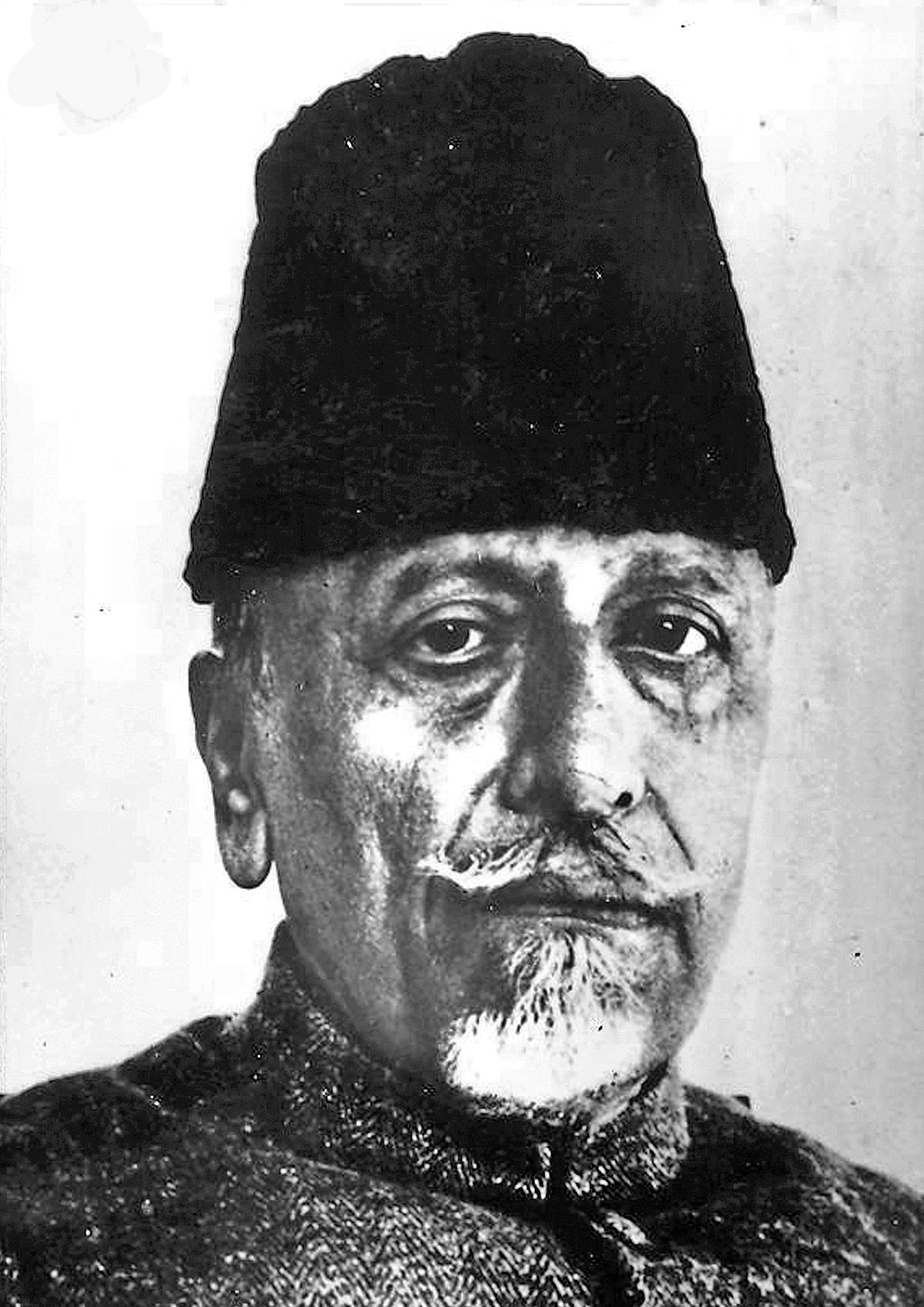
- 11 Nov 2024
In News:
National Education Day is celebrated annually on November 11 to honor the birth anniversary of Maulana Abul Kalam Azad, India's first Education Minister and a prominent freedom fighter, scholar, and educator.
Key Highlights:
- Establishment:
- The observance was instituted by the Ministry of Human Resource Development (now Ministry of Education) in 2008 to recognize Azad’s pivotal contributions to India’s education system and his vision for a progressive, educated society.
- Azad's Contributions to Education:
- Azad played a significant role in shaping India's post-independence educational landscape, establishing critical institutions such as:
- University Grants Commission (UGC)
- All India Council for Technical Education (AICTE)
- Indian Institutes of Technology (IIT), including IIT Kharagpur
- Indian Council for Cultural Relations (ICCR)
- Promoted scientific research, cultural institutions, and technical education.
- Azad played a significant role in shaping India's post-independence educational landscape, establishing critical institutions such as:
- Significance of National Education Day:
- Reflects India’s commitment to promoting quality and inclusive education.
- Emphasizes the importance of education in empowering individuals and fostering national progress.
- Highlights educational reforms, literacy, and equal access to education as tools for societal transformation and empowerment.
- Theme for 2024:
- Although not officially published yet, the theme is expected to focus on inclusive, high-quality education, underlining the need for educational systems that equip students with skills to thrive in a rapidly evolving world.
- Focus Areas:
- Promoting literacy, equal access to education, and educational reforms.
- Developing critical thinking, creativity, and emotional intelligence in students.
QS World University Rankings
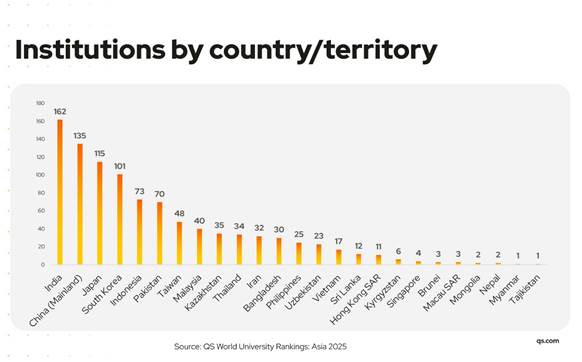
- 10 Nov 2024
In News:
The QS World University Rankings: Asia 2025 spotlights the top institutions in Eastern, Southern, South-Eastern, and Central Asia, emphasizing academic excellence, research, innovation, and internationalization.
India's Performance:
India has shown a remarkable upward trajectory, featuring:
- Two institutions in the Top 50:
- IIT Delhi ranked 44th (up from 46th), with a 99% employer reputation score.
- IIT Bombay ranked 48th, excelling with a 99.5% employer reputation score and 96.6% academic reputation score.
- Top 100 Institutions:
- IIT Madras (56th), IIT Kharagpur (60th), Indian Institute of Science (62nd), IIT Kanpur (67th), and University of Delhi (81st).
- Top 150 Institutions:
- IIT Guwahati, IIT Roorkee, Jawaharlal Nehru University, Chandigarh University (120th), UPES (148th), and VIT (150th).
Key Indicators for India:
- International Research Network and Citations per Paper contribute to India's growing global academic reputation.
- Papers per Faculty and Staff with PhD are India’s strongest indicators, reflecting robust research output and high teaching standards.
- Anna University achieved a perfect score of 100 in the Papers Per Faculty indicator, emphasizing high research output.
- North Eastern Hill University and University of Agricultural Sciences, Bangalore received a perfect score of 100 in the Faculty-Student Indicator.
Growth of Indian Institutions:
- India now has 46 institutions in the 2025 rankings, up from just 11 in 2015, marking a 318% increase over the past decade.
- India dominates Southern Asia with seven institutions in the top 10, showcasing the country's strengthening educational landscape.
India's Growing Global Influence:
- India's achievements underscore its commitment to academic excellence, competitiveness, and resilience in global higher education.
- Institutions like IIT Delhi and IIT Bombay highlight India’s ability to balance research productivity with high-quality teaching, enhancing its reputation as a global education hub.
AUSTRAHIND 2024
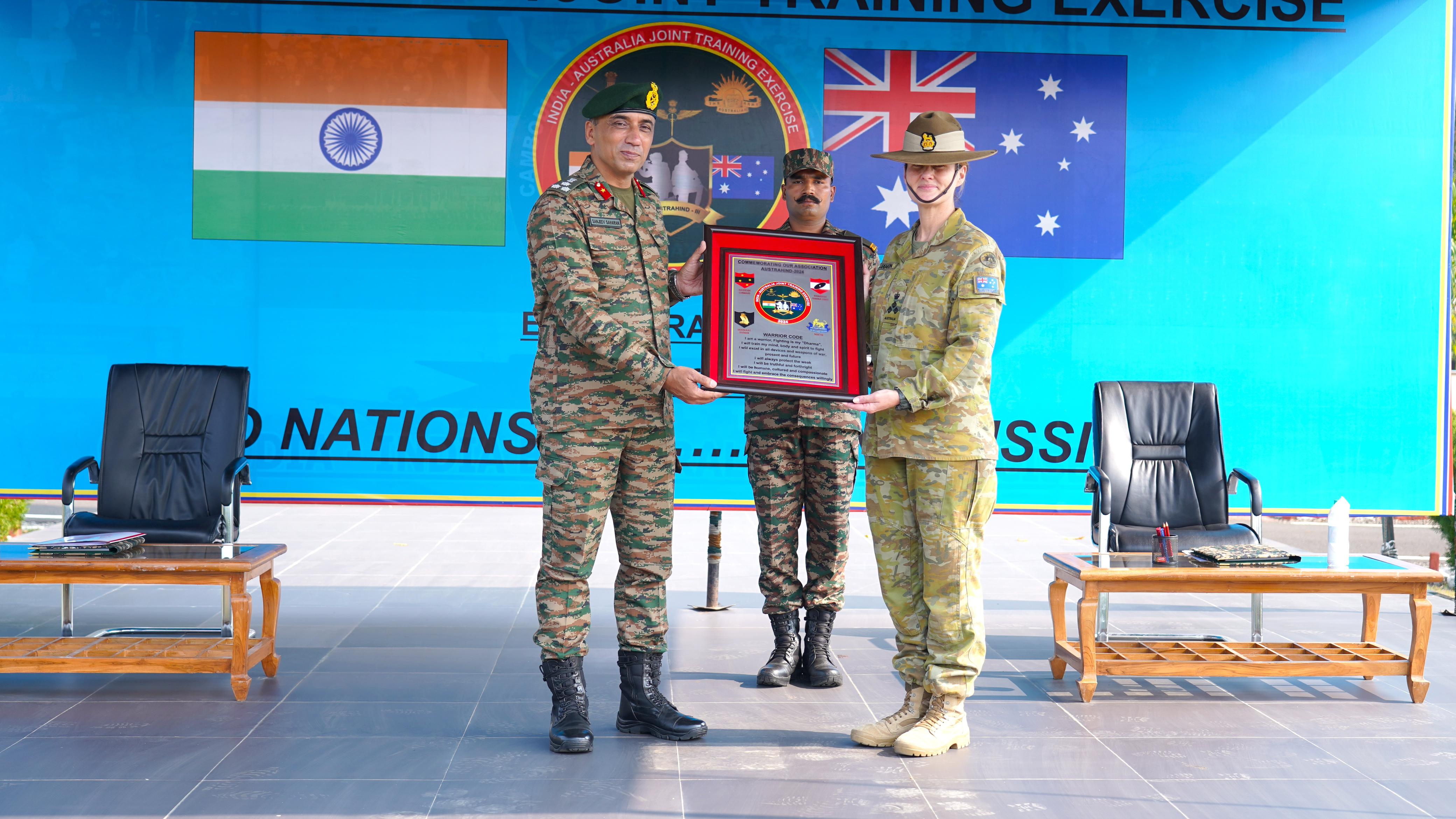
- 09 Nov 2024
In News:
- The 3rd edition of Exercise AUSTRAHIND started on 8th November 2024 at the Foreign Training Node in Pune, Maharashtra. The exercise will run until 21st November 2024.
Participating Forces:
- Indian Contingent: 140 personnel, primarily from the DOGRA Regiment and Indian Air Force (14 personnel).
- Australian Contingent: 120 personnel from the 13th Light Horse Regiment of the 10th Brigade of the 2nd Division.
Purpose of the Exercise:
- Enhance Military Cooperation between India and Australia.
- Promote Interoperability in conducting joint sub-conventional operations in semi-urban and semi-desert terrain.
- Focus on operations under Chapter VII of the UN mandate.
Key Objectives:
- Joint Tactical Drills and Planning to improve coordination between the forces.
- Training in counter-terrorism operations, special heli-borne operations, and drone countermeasures.
Phases of the Exercise:
Combat Conditioning and Tactical Training Phase:
- Includes drills such as terrorist response, territory capture, and Raid and Search & Destroy Missions.
- Establishment of Joint Operations Centre and securing critical infrastructure like helipads.
- Training on drone operations and counter-drone measures.
Validation Phase: Practical application and testing of skills learned in the previous phase.
Significance:
Best Practices Sharing: Both sides will exchange tactics, techniques, and procedures for conducting effective tactical operations.
Camaraderie Building: The exercise will foster a strong bond between soldiers from both countries.
Background: AUSTRAHIND is an annual exercise held alternately in India and Australia. The last edition took place in Australia in December 2023.
Digital Population Clock
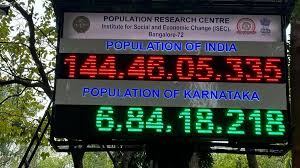
- 09 Nov 2024
In News:
- Bengaluru's first digital population clock was inaugurated at the Institute for Social and Economic Change (ISEC) on November 8, 2024.
- The initiative is collaboration between ISEC and the Union Ministry of Health and Family Welfare (MoHFW).
Purpose:
- The clock provides real-time population estimates for Karnataka and India.
- It aims to enhance awareness about population dynamics and provide accurate demographic data for research and policy analysis.
Key Features:
- Real-time Updates:
- Karnataka’s population is updated every 1 minute and 10 seconds.
- India’s population updates every 2 seconds.
- Precision:
- The clock operates with satellite connections for real-time, accurate data updates.
- It functions autonomously with integrated components, ensuring continuous and precise tracking.
- Location: The clock is prominently displayed at the entrance of ISEC.
- National Expansion: Similar digital population clocks are being installed in 18 Population Research Centres across India by MoHFW.
Significance:
- Awareness: The clock serves as a visual tool to highlight the rapid pace of population growth and its implications for sustainable development.
- Research and Analysis: The clock is part of a broader effort to improve demographic studies and inform policy-making.
- Census Data Research Workstation:
- ISEC has introduced a new research workstation, supported by MoHFW, for in-depth demographic analysis.
- The facility is equipped with advanced software for studying population trends and supporting academic research.
Global Education Monitoring Report 2024
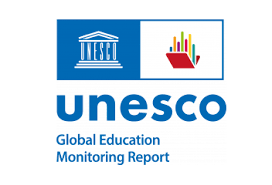
- 09 Nov 2024
In News:
- Released at the Global Education Meeting, hosted in Fortaleza by Brazil, the G20 President.
- Highlights progress and challenges in global education, with a focus on leadership, financing, and access.
Key Observations:
Leaders as Agents of Change:
- Education leadership is defined as social influence towards achieving common educational goals.
- Education leaders must:
- Define clear purposes and influence change.
- Balance learning outcomes with equity, quality, and inclusion.
Funding Deficits:
- 4 out of 10 countries spend less than 4% of their GDP on education.
Out-of-School Children:
- 251 million children and youth globally remain out of school, with only a 1% reduction since 2015.
Regional Disparities in Education Access:
- Central and Southern Asia show significant progress, but countries like Afghanistan, Bangladesh, India, and Pakistan still have large out-of-school populations.
Recommendations:
- Leadership Development: Empower school principals with the autonomy to manage schools effectively.
- Capacity Building for System Leaders: Strengthen the ability of education officials to act as system leaders.
- Climate Change Education: Introduce climate change topics in early education across subjects, not limited to science.
India’s Educational Initiatives:
- National Education Policy (NEP) 2020: Focuses on developing school leadership through training and workshops for principals.
- NISHTHA Program: Aims to improve leadership and management competencies of school heads and teachers.
Current Educational Landscape:
- Since 2015, 110 million children have entered school, and 40 million more complete secondary education.
- However, 33% of children in low-income countries remain out of school, compared to only 3% in high-income countries.
- Sub-Saharan Africa houses more than half of the global out-of-school youth.
Challenges in Education Financing:
- UNESCO–World Bank report highlights that 40% of countries allocate less than 15% of their public expenditure to education.
- Countries investing less than 4% of GDP in education face significant resource shortages.
- Low-income countries spend an average of $55 per learner, while high-income countries spend $8,543 per learner.
Need for Innovative Financing Mechanisms:
- Debt-for-Education Swaps: Proposes converting unsustainable debt into funding for education, leveraging past successful initiatives.
- Multilateral Platforms: Suggested to facilitate global negotiations for converting debt into educational investments, involving entities like UNESCO and the G20.
International Cooperation and Solidarity:
- Decline in Education Assistance: Official development assistance for education has decreased from 9.3% in 2019 to 7.6% in 2022.
- Strengthening Partnerships: The need for enhanced global cooperation to fill the educational financing gap and ensure equitable access to quality education.
Adaptation Gap Report 2024
- 08 Nov 2024
In News:
The Adaptation Gap Report 2024, published by the United Nations Environment Programme (UNEP), underscores the urgent need for enhanced climate adaptation efforts, particularly through increased financial support for developing countries. The report, titled Come Hell and High Water, provides an annual assessment of global adaptation progress in planning, implementation, and financing.
Key Findings
- Adaptation Gap:
- The adaptation finance gap is estimated at $187–359 billion per year.
- Current adaptation finance falls short, with only $28 billion provided in 2022, meeting just 5% of projected needs.
- Adaptation Progress:
- International public adaptation finance to developing countries rose to $27.5 billion in 2022, up from $19 billion in 2019, reflecting progress toward the Glasgow Climate Pact's goal of doubling finance by 2025.
- Significance of Adaptation:
- Ambitious adaptation measures could reduce global climate risk by 50%.
- For instance, $16 billion annually in agriculture could prevent climate-induced hunger for 78 million people.
- Impact of Global Warming:
- According to UNEP's Emissions Gap Report 2024, global temperatures may increase by 2.6°C–3.1°C above pre-industrial levels by 2100.
- Developing countries face severe vulnerabilities, evidenced by recent floods in Nepal, Nigeria, and Chad.
- National Adaptation Plans (NAPs):
- While 171 countries have at least one adaptation policy, progress in implementation remains slow.
- 10 countries have shown no interest in developing adaptation policies.
Challenges in Adaptation Financing
- Financial Burden: Adaptation projects such as seawalls and resilient infrastructure are costly for developing nations.
- Funding Shortfalls:
- Developed nations have failed to meet financial commitments like the $100 billion goal set for 2020.
- The adaptation finance gap remains significant in non-private sector-funded areas, such as ecosystem preservation.
- High-Interest Loans: Much current funding relies on high-interest loans, increasing the debt burden for recipient countries.
Recommendations
- Adopt New Financing Goals: Establish an ambitious New Collective Quantified Goal for climate finance at COP29.
- Strategic Adaptation Financing:
- Shift from project-based to anticipatory and transformational financing.
- Invest in harder-to-finance areas like ecosystem preservation and cultural heritage.
- Alternative Financing Models: Encourage risk finance, resilience bonds, debt-for-adaptation swaps, and payments for ecosystem services.
Global and Indian Initiatives
Global Initiatives:
- Paris Agreement: Sets a global adaptation goal to enhance resilience.
- UAE Framework for Global Climate Resilience: Introduced at COP28, focusing on agriculture, water, and health adaptation targets.
- Adaptation Fund: Provides project funding for developing nations under the Kyoto Protocol.
Indian Initiatives:
- National Action Plan on Climate Change (NAPCC): Includes eight missions, such as the National Adaptation Fund for Climate Change (NAFCC).
- Sectoral Schemes:
- MISHTI: Mangrove initiative for shoreline protection.
- Amrit Dharohar: Enhances wetland ecosystems.
- India's adaptation spending accounted for 5.6% of GDP in 2021–2022.
PM Vishwakarma Yojana
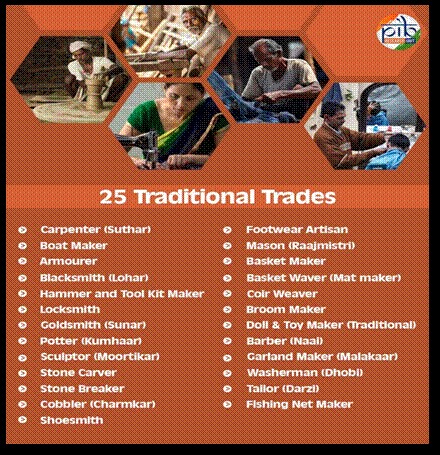
- 08 Nov 2024
In News:
The PM Vishwakarma Yojana is a landmark initiative by the Indian government aimed at revitalizing traditional craftsmanship and empowering artisans and craftspeople, often referred to as Vishwakarmas. Launched on September 17, 2023, during Vishwakarma Jayanti, the scheme highlights the government's commitment to preserving India's rich cultural heritage and supporting the unorganized sector.
Key Highlights
- Objective:
- To strengthen the Guru-Shishya tradition and improve the quality, reach, and marketability of products and services by artisans.
- To integrate Vishwakarmas into domestic and global value chains, making them self-reliant.
- To alleviate poverty by supporting rural and urban artisans across India.
- Financial Outlay:,Fully funded by the Union Government with a ?13,000 crore budget spanning five years (2023–2028).
- Eligibility:
- Open to rural and urban artisans and craftspeople involved in 18 traditional crafts, such as blacksmithing, goldsmithing, pottery, boat making, and carpentry.
- Covers 5 lakh families in the first year and aims to reach 30 lakh families over five years.
- Key Benefits:
- Financial Support:
- Collateral-free credit of ?1 lakh (first tranche) and ?2 lakh (second tranche) at a concessional 5% interest rate.
- Government provides 8% interest subvention upfront to banks.
- Toolkit Incentive: ?15,000 via e-vouchers for acquiring modern tools.
- Training and Skill Development: Basic and advanced skill training to create industry-ready manpower.
- Digital and Marketing Incentives: Encourages digital transactions and provides marketing support.
- Recognition: Beneficiaries receive a PM Vishwakarma Certificate and ID Card.
- Market Linkage: Facilitates better market access for artisan products.
- Financial Support:
- Achievements (as of Nov 4, 2024):
- 25.8 million applications received.
- 2.37 million artisans registered after verification.
- Over 1 million artisans benefited from toolkit incentives.
Significance
- Promotes inclusive development by supporting an underserved segment of the workforce.
- Recognizes and supports traditional skills passed down through generations, preserving India’s cultural diversity.
- Enhances productivity and competitiveness by integrating artisans into MSME sectors.
- Encourages sustainability through the promotion of handmade, eco-friendly crafts.
Key Institutions Involved
- Ministry of Micro, Small, and Medium Enterprises (MSME): Oversees implementation.
- Common Services Centres (CSC): Facilitates registration through biometric-based PM Vishwakarma Portal.
Challenges Addressed
- Lack of access to modern tools and financial support.
- Insufficient market linkages and exposure for traditional crafts.
- Limited opportunities for skill enhancement and product development.
Adoption Awareness Month 2024

- 08 Nov 2024
In News:
Adoption Awareness Month is an annual event where CARA and all its stakeholders come together to raise awareness about the legal process of adoption.
Context
- Celebrated by: Ministry of Women and Child Development (MWCD) and the Central Adoption Resource Authority (CARA).
- When: November 2024.
- Theme: “Rehabilitation of Older Children through Foster Care and Foster Adoption.”
- Purpose: To raise awareness about legal adoption, foster care, and the rehabilitation of older children in India.
Objectives
- Promote Legal Adoptions:
- Create awareness about the legal framework and processes for adoption.
- Encourage prospective adoptive parents (PAPs) to adopt older children or children with special needs.
- Foster Care Focus:
- Highlight the importance of foster care as a rehabilitative measure for older children.
- Public Engagement:
- Engage various stakeholders, including adoptive families, PAPs, older adoptees, and the general public, to share experiences and insights.
Key Activities
- Nationwide Campaigns:
- Offline events in states like Ladakh, Assam, Mizoram, Maharashtra, Karnataka, and West Bengal.
- Mega event in Lucknow, Uttar Pradesh, on November 21, 2024.
- Online Initiatives (via MyGov India):
- Storytelling, poster making, slogan writing, pledges, and online surveys.
- Informative content on adoption and foster care shared via social media.
- Interactive Engagements:
- Cultural programs, competitions, Q&A sessions with PAPs, and discussions with stakeholders.
- Sharing of experiences by older adoptees and adoptive parents.
Significance of Adoption Awareness Month
- Focus on Older Children:
- Addresses challenges faced by older children in finding permanent families.
- Promotes inclusive adoption practices for children with special needs or in foster care.
- Stakeholder Involvement:
- Builds trust and awareness by sharing real-life adoption experiences.
- Encourages societal participation in the rehabilitation of vulnerable children.
- Policy Awareness:
- Educates the public about the legal adoption process under CARA.
- Highlights the benefits and responsibilities of foster care and adoption.
Central Adoption Resource Authority (CARA)
- Role: Apex body for regulating adoption in India under the MWCD.
- Key Function: Ensures legal, ethical, and transparent adoption processes for orphaned, abandoned, and surrendered children.
Challenges in Adoption and Foster Care
- Limited awareness about adopting older children or children with special needs.
- Cultural and societal barriers.
- Complexities in the legal adoption process.
Way Forward
- Streamlining Processes: Simplify legal procedures to make adoption and foster care accessible.
- Increased Awareness: Continued campaigns to reduce stigma and misinformation about adoption.
- Policy Support: Strengthen programs for foster care and ensure periodic evaluation of their impact.
21st India-US Military Cooperation Group (MCG) Meeting
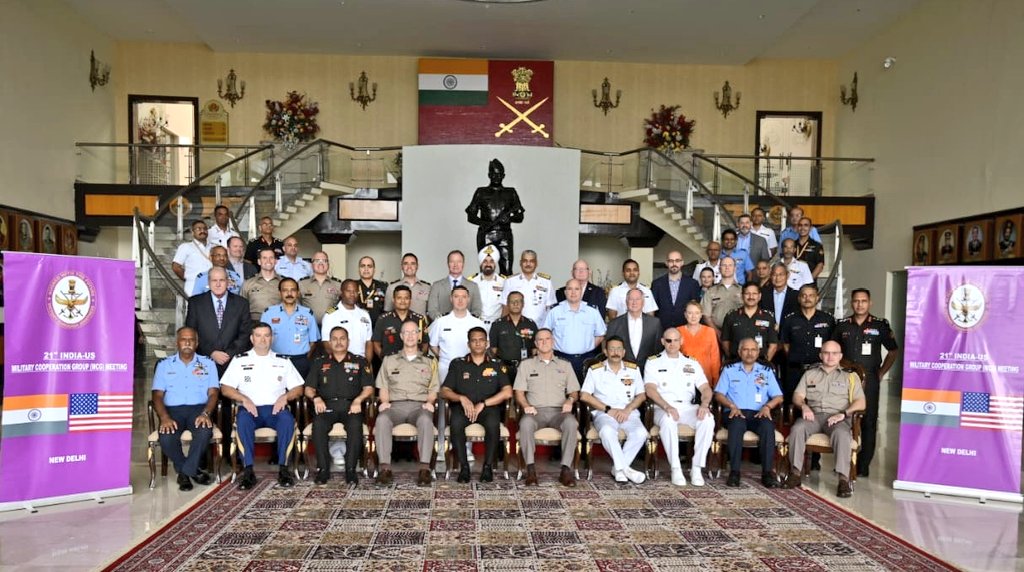
- 07 Nov 2024
In News:
- The 21st India-US Military Cooperation Group (MCG) meeting was held from November 5 to 6, 2024, at the Manekshaw Centre, New Delhi.
- The meeting focused on strengthening defence ties between India and the US, covering a wide range of topics aimed at improving military cooperation.
Key Areas of Discussion
- Capacity Building: The meeting discussed initiatives for enhancing defence capacity through training exchanges, joint exercises, and sharing best practices.
- Defence Industrial Cooperation: Both countries explored opportunities for collaborative defence industrial ventures and technology sharing.
- Joint Exercises: The advancement of joint military exercises was highlighted to boost readiness against both conventional and hybrid threats.
- Strategic Objectives: The meeting aimed to enhance interoperability between the two countries' armed forces, enabling more effective joint operations.
Commitment to Strengthen Indo-US Defence Ties
- Strategic Partnership: Both nations reaffirmed their commitment to strengthening the Indo-US defence partnership, recognizing the shared challenges in the Indo-Pacific region.
- Focus on Regional Security: The discussions underscored the importance of ensuring regional security and global stability in the face of emerging threats.
The Role of the MCG
- Purpose: The MCG forum serves as a key platform for enhancing strategic and operational defence collaboration between India and the US.
- Long-term Goals: The MCG aims to build mutual defence capabilities, counter emerging threats, and ensure the security of both nations and the wider region.
India-Algeria Strengthen Defence Ties
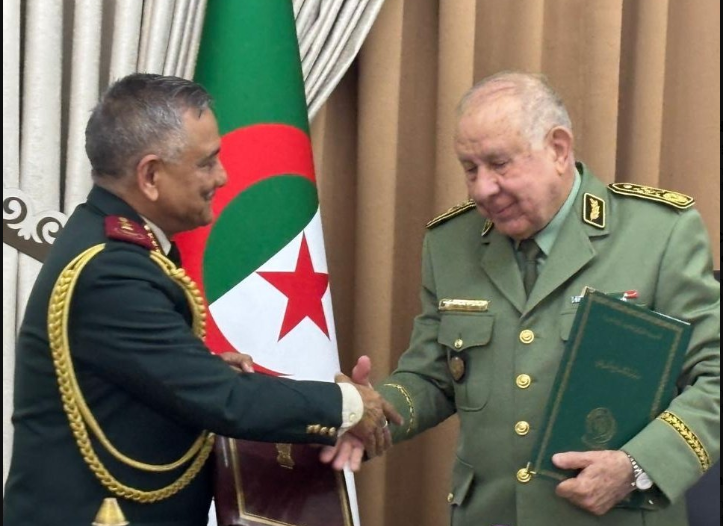
- 06 Nov 2024
In News:
- The Chief of Defence Staff (CDS) of India recently visited Algeria, culminating in the signing of a significant Memorandum of Understanding (MoU) on defence cooperation.
- Objective: The MoU aims to strengthen the strategic and military ties between India and Algeria.
Recent Developments in India-Algeria Relations
- Important Visit: The CDS’s visit coincided with Algeria’s 70th anniversary of its revolution, celebrated on November 1st, with military parades and ceremonies highlighting Algeria’s historical and political legacy.
- Defence Cooperation:
- India re-established its defence wing in Algeria, and Algeria reciprocated by considering the establishment of its defence wing in India.
- India emphasized its role as a “Vishwa Bandhu” (global partner) and offered to share defence expertise and experiences with Algeria.
- Strategic Discussion: The MoU aims to enhance mutual understanding, laying the foundation for long-term defence collaboration across multiple sectors, including manufacturing under India’s 'Make in India' and 'Make for the World' initiatives.
- Global Peace Support: CDS reiterated India’s commitment to peaceful conflict resolution and expressed support for Algeria’s defence interests.
Significant Areas of India-Algeria Relationship
- Diplomatic Relations:
- India and Algeria established diplomatic ties in July 1962, the same year Algeria gained independence from French colonial rule.
- India supported Algeria's liberation movement and both countries have maintained close ties as part of the Non-Aligned Movement.
- Bilateral Trade:
- Trade peaked at USD 2.9 billion in 2018 but dropped to USD 1.5 billion by 2021 due to COVID-19 and Algeria’s import restrictions.
- Trade rebounded in 2022, increasing by 24% to USD 2.1 billion.
- Exports from India (2023-24): Rice, pharmaceuticals, granite.
- Imports from Algeria: Petroleum oils, LNG, calcium phosphates.
- Bilateral Agreements:
- 2015 MoU: Between All India Radio (AIR) and Algerian National Radio for cooperation in broadcasting.
- 2018 Space Cooperation Agreement: Focuses on satellite technology for applications like crop forecasting and disaster management.
- Visa Waiver Agreement (2021): Diplomatic and official passport holders are exempt from visa requirements.
- Cultural Engagement:
- International Day of Yoga (2024): Celebrated in Algeria at the Jardin d’Essai du Hamma, attracting over 300 participants.
- Space Cooperation:
- The 2018 India-Algeria Space Cooperation Agreement focuses on joint space science, technology, and applications.
- India has launched four Algerian satellites (2016), and the 2022 Joint Committee Meeting expanded satellite capacity building efforts.
- Algeria’s space agency has engaged with ISRO on satellite applications like crop forecasting and disaster management.
- Indian Community in Algeria:
- Approximately 3,800 Indians live in Algeria, working in various sectors, including technical and semi-skilled roles.
- The community includes 13 Overseas Citizens of India (OCI), 10 Persons of Indian Origin (PIOs), and 15 Indian students.
Minuteman III ICBM
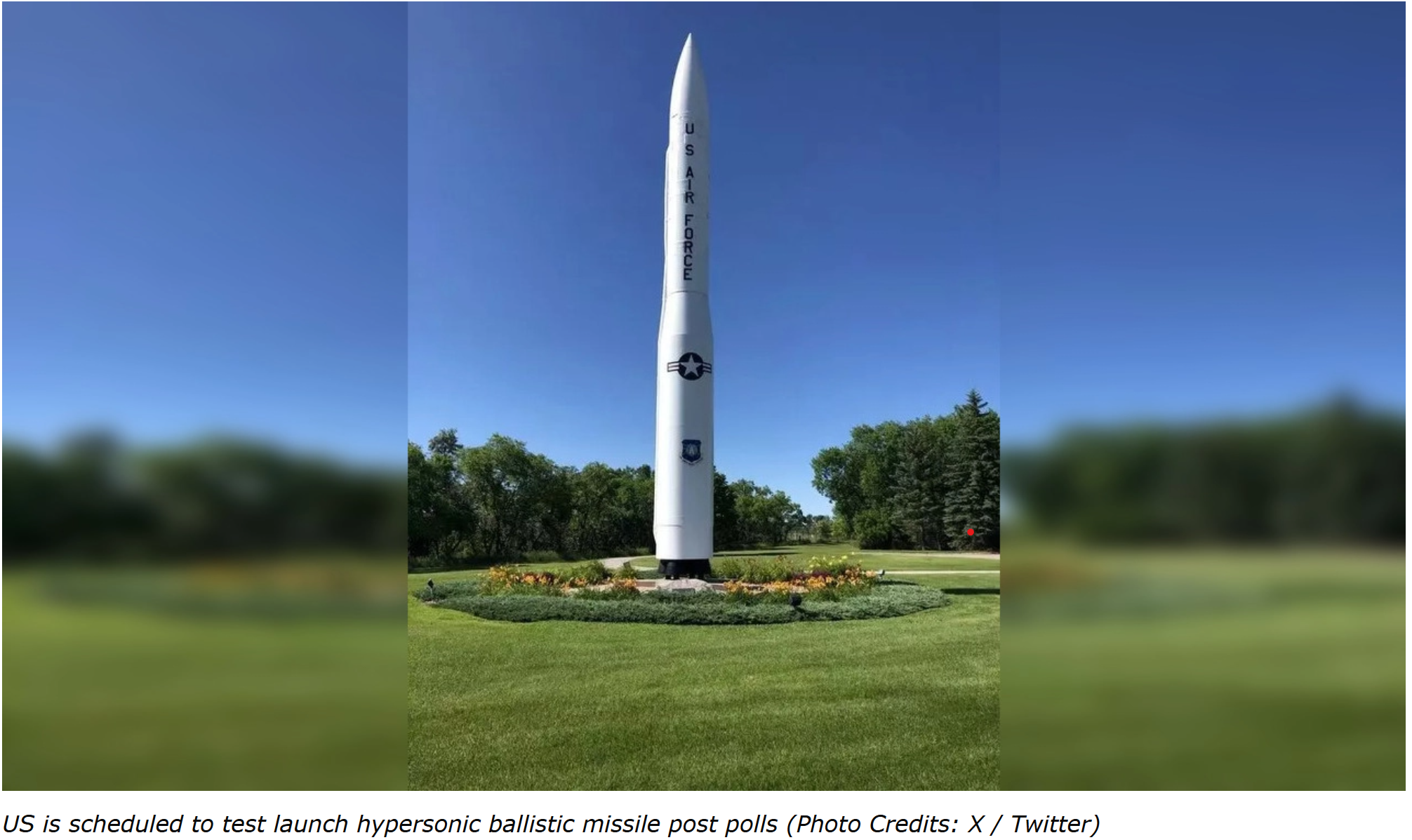
- 06 Nov 2024
In News:
The U.S. Army is scheduled to test launch a Minuteman III ICBM (Intercontinental Ballistic Missile) after the closure of voting on Election Day.
Missile Features
- Speed: Hypersonic, capable of reaching speeds up to 15,000 mph (Mach 23).
- Range: 13,000 km.
- Payload: Currently carries one nuclear warhead (as per arms control agreements with Russia), but originally designed for multiple independently targetable re-entry vehicles (MIRVs).
- Launch Time: Extremely fast, enabling near-instant global retaliation capabilities.
- Testing Reliability: Nearly 100% success rate in tests, with backup airborne launch controllers to ensure continuity of the retaliatory strike capability.
- Length: 18.2 meters.
- Diameter: 1.85 meters.
- Launch Weight: 34,467 kg.
- Type: Three-stage, solid-fuel missile.
Strategic Significance
- Land-Based Nuclear Deterrent: The Minuteman III is a key component of the U.S. nuclear triad, which includes land-based missiles, submarine-launched missiles (SLBMs), and strategic bombers.
- Cost-Effectiveness: The Sentinel weapon system (modernized Minuteman III) is viewed as the most cost-effective option for maintaining the land-based leg of U.S. nuclear deterrence until the planned Ground-Based Strategic Deterrent (GBSD) system replaces it in 2029.
- Global Reach: The missile can strike any target worldwide within minutes, demonstrating U.S. nuclear reach and power projection.
Tumaini Festival
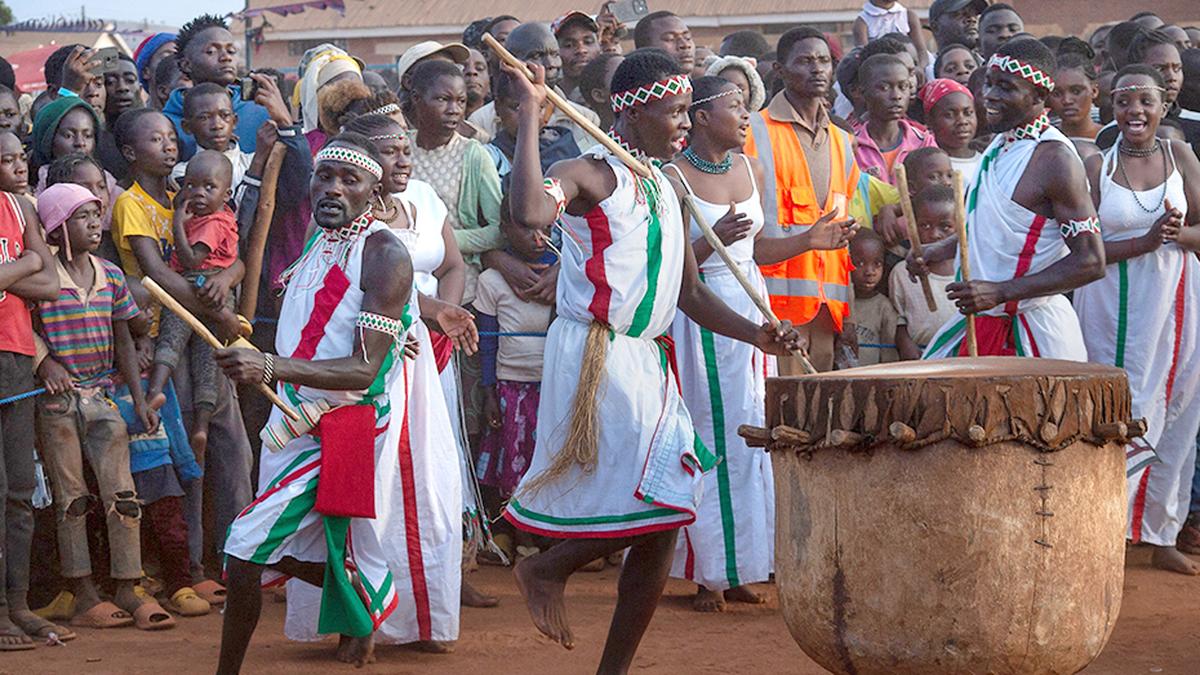
- 04 Nov 2024
In News:
- The Tumaini Festival is held annually in the Dzaleka Refugee Camp in Malawi, one of the world’s few music festivals hosted within a refugee camp. It brings together refugees and locals for cultural exchange, showcasing music, art, and crafts.
- Dates: The festival runs from Thursday to Saturday each year, typically in November.
- Founded: In 2014 by Congolese poet Menes La Plume.
Festival Highlights:
- The festival features performances from a diverse range of artists, including refugees and local Malawians, as well as artists from South Africa, Zimbabwe, and beyond.
- In 2024, performances included Jetu, a 72-year-old singer, and Vankson Boy V, a Congolese refugee, alongside other acts like Maveriq Mavo from South Africa.
- The festival aims to:
- Celebrate cultural exchange and community solidarity between refugees and locals.
- Humanize the refugee experience by allowing refugees and locals to share common experiences and celebrate cultural diversity.
- Challenge stereotypes by showing refugees as people with the same aspirations, talents, and desires as locals.
Significance of Dzaleka Refugee Camp:
- Location: Situated near Lilongwe, Malawi, Dzaleka was originally a prison before becoming a refugee camp in 1994.
- Capacity: Initially designed for 10,000 refugees, the camp now hosts over 60,000 individuals from countries like Democratic Republic of Congo (DRC), Rwanda, Burundi, Ethiopia, and Somalia.
- Role: Dzaleka has evolved into a hub for humanitarian aid, cultural exchange, and empowerment of its residents.
National Biodiversity Strategy and Action Plan (NBSAP) 2024-2030
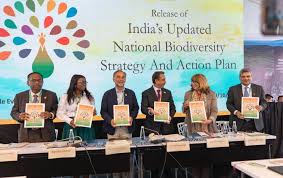
- 03 Nov 2024
In News:
The updated NBSAP was released by India at the 16th Conference of Parties (COP16) to the Convention on Biological Diversity (CBD).
Overview of the NBSAP (2024-30):
- Title:Updated National Biodiversity Strategies and Action Plan: A Roadmap for Conservation of India’s Biodiversity.
- Objective: To provide a comprehensive roadmap for biodiversity conservation, aligning with global frameworks like the Kunming-Montreal Global Biodiversity Framework (KMGBF).
Key Features of the Updated NBSAP:
- Alignment with Global Frameworks:
- The Kunming-Montreal Global Biodiversity Framework (KMGBF) adopted in 2022 aims to halt and reverse biodiversity loss by 2030.
- India’s updated NBSAP aligns with KMGBF’s goals, focusing on biodiversity conservation, sustainable resource use, and ensuring fair benefit-sharing.
- 23 National Biodiversity Targets:
- The targets are focused on three key themes:
- Reducing threats to biodiversity
- Ensuring sustainable use of biodiversity
- Enhancing tools for biodiversity implementation
- The targets are focused on three key themes:
- Key Domains of Focus:
- Area-based conservation: Protecting ecosystems and habitats.
- Ecosystem resilience: Enhancing the ability of ecosystems to withstand environmental stressors.
- Recovery and conservation of threatened species.
- Conservation of agrobiodiversity: Ensuring the sustainability of agricultural biodiversity.
- Sustainable management of biodiversity.
- Enabling tools and solutions: Including financial and technical support for implementation.
- Financial Plan and Expenditure:
- Biodiversity Expenditure Review (BER) estimated an average annual expenditure of Rs 32,20,713 crore (FY 2017-2022) for biodiversity conservation.
- Future funding requirements (FY 2024-2030) estimated at Rs 81,664.88 crore annually at the central government level.
- Biodiversity Finance Plan suggests financing solutions, including public finance, corporate social responsibility (CSR), Ecological Fiscal Transfer (EFT), and Access and Benefit Sharing (ABS) mechanisms.
- Capacity Building:
- The NBSAP stresses the need for capacity building across various levels—national, state, and local.
- Focus on skills acquisition for biodiversity management and enhancing knowledge to implement conservation strategies.
Implementation Framework:
- Multi-Level Governance:
- At the national level, the Ministry of Environment, Forest, and Climate Change (MoEFCC) will oversee implementation with involvement from 22 other ministries.
- State-level: Involves State Biodiversity Boards and Union Territory Biodiversity Councils.
- Local level: Community-driven efforts through Biodiversity Management Committees.
- BIOFIN and Resource Mobilization:
- India is recognized as a leading country in the implementation of the Biodiversity Finance Initiative (BIOFIN).
- Encouragement for private entrepreneurs, businesses, and international donors to invest in biodiversity through innovative financial instruments like:
- Green Bonds
- Green Funds
- Payment for Ecosystem Services (PES)
- Incentives for Financial Solutions:
- India aims to explore funding from corporate social responsibility (CSR), ecological fiscal transfers, and access and benefit sharing mechanisms to meet the financial needs for biodiversity conservation.
Challenges and Strategies:
- Challenges India Faces:
- Habitat fragmentation
- Pollution
- Illegal wildlife trade
- Adverse effects of climate change
- Strategic Responses:
- The updated NBSAP provides strategies to address these challenges, ensuring comprehensive conservation and sustainable use of biodiversity.
Hwasong-19
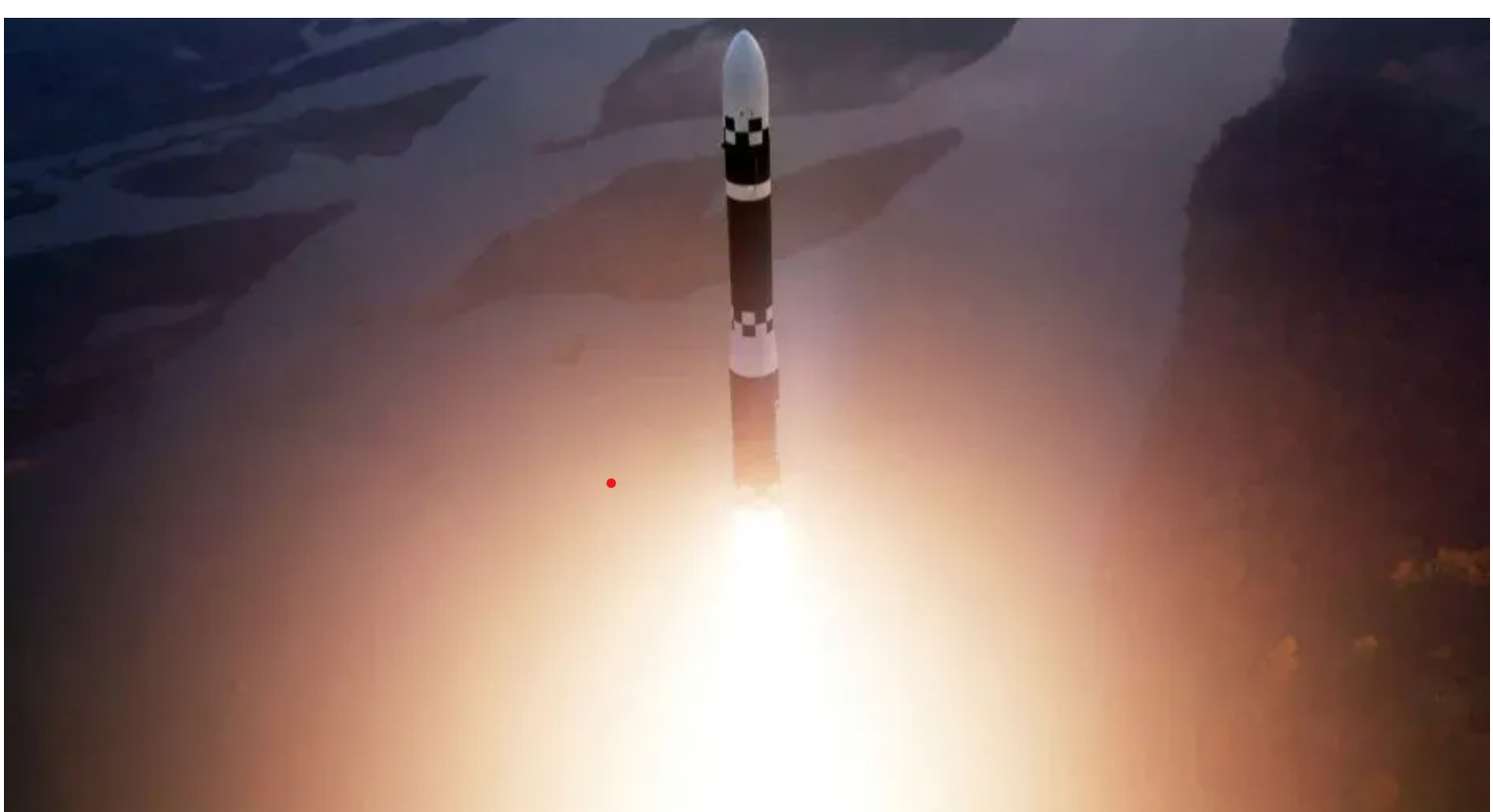
- 02 Nov 2024
In News:
- North Korea recently announced the successful test-firing of its latest intercontinental ballistic missile (ICBM), the ‘Hwasong-19’.
- Claims by North Korea: The missile was described as ‘the world’s strongest strategic missile’ and a ‘perfected weapon system’ by North Korean state media.
Key Features of the Hwasong-19:
- Solid-Fuel Propulsion: The Hwasong-19 reportedly uses solid-fuel propulsion, which enables quicker launches and greater secrecy. This contrasts with liquid-fuel missiles, which take longer to prepare and are more visible.
- Enhanced Performance: The missile is said to have improved altitude and flight duration compared to previous North Korean ICBMs, marking significant progress in missile technology.
- Size: The Hwasong-19 is estimated to be 28 meters long (92 feet), which is notably larger than many other ICBMs, including those from the U.S. and Russia, which are typically under 20 meters (66 feet).
Strategic Implications:
- Reach and Targeting: The Hwasong-19 is believed to have a range of over 13,000 kilometers, which is sufficient to target the U.S. mainland, signaling a significant advancement in North Korea’s missile capabilities.
- Nuclear Capability: While specific details on the missile’s payload remain undisclosed, the Hwasong-19 could potentially be equipped with a nuclear warhead, enhancing North Korea's strategic deterrence.
Impact on Regional and Global Security:
- US-North Korea Tensions: The launch occurred against the backdrop of ongoing U.S.-North Korea tensions, particularly over North Korea’s nuclear and missile programs. The missile could potentially alter the regional security dynamics, especially in East Asia.
What is an ICBM?
- ICBM Definition: An intercontinental ballistic missile (ICBM) is a long-range missile capable of carrying nuclear warheads (or other payloads) across continents.
- Range and Speed: ICBMs typically have a minimum range of 5,500 km (3,400 miles), with some capable of reaching up to 16,000 km or more, making them far faster and more capable than other ballistic missiles.
- Launch Mechanism: ICBMs are launched from land or submarine platforms, traveling through space before re-entering the Earth’s atmosphere and targeting distant objectives.
- Comparison with India's Agni-V: India’s Agni-V ICBM, which has a range of over 5,000 km, is often compared to North Korea’s missile systems.
Asset Recovery Interagency Network–Asia Pacific (ARIN-AP)
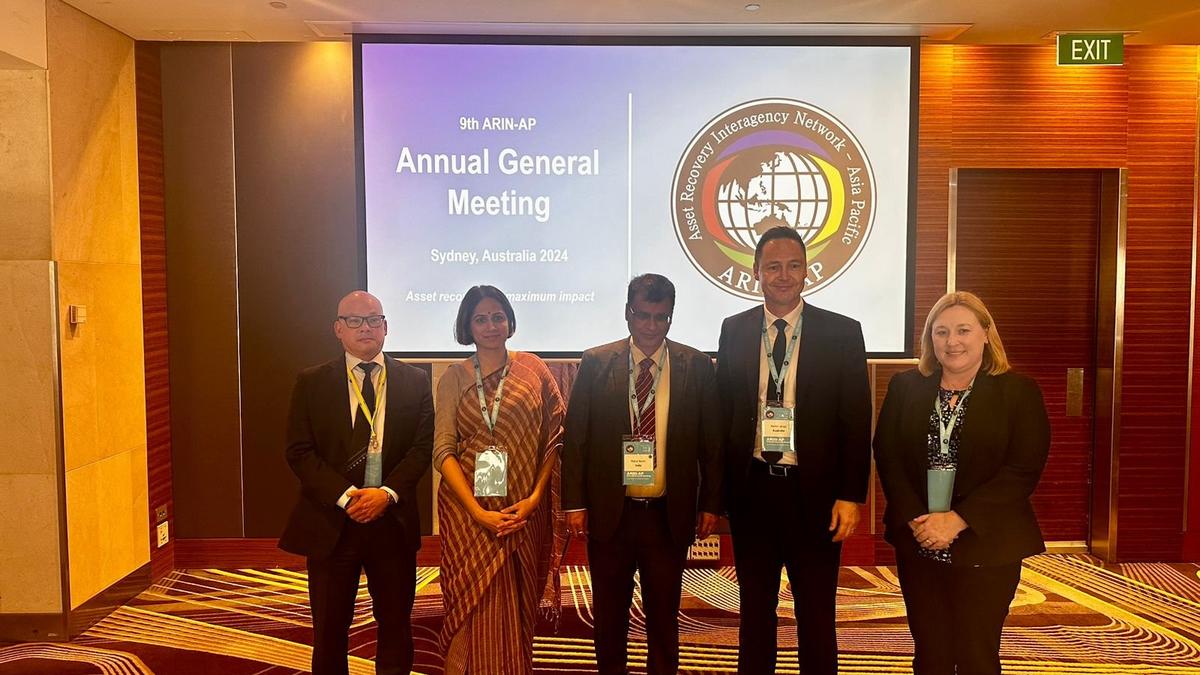
- 02 Nov 2024
In News:
- India, represented by the Directorate of Enforcement (ED), has joined the Steering Committee of the Asset Recovery Interagency Network-Asia Pacific (ARIN-AP).
- Leadership Role: India will assume the presidency of ARIN-AP and host the Annual General Meeting (AGM) in 2026, providing a platform for global cooperation in asset recovery and tackling economic crimes.
ARIN-AP Overview:
- Establishment: ARIN-AP is a multi-agency network formed to address the proceeds of crime across the Asia-Pacific region.
- Network Goals: Its mission is to facilitate cross-border collaboration in the areas of asset tracing, freezing, and confiscation.
- Membership: ARIN-AP includes 28 member jurisdictions and 9 observers, and operates as a key component of the Global CARIN Network (Camden Asset Recovery Inter-Agency Network).
- Functioning: ARIN-AP operates through a network of contact points that enable intelligence exchange among member agencies, promoting effective communication and coordination for asset recovery.
Significance of ARIN-AP's Work:
- Combating Economic Crimes: ARIN-AP enhances the efforts of law enforcement agencies in tracing and recovering assets linked to criminal activities, including both movable and immovable assets.
- Informal Exchange of Intelligence: The network allows for the informal exchange of intelligence between agencies, which often accelerates the identification and recovery of proceeds of crime. This can later lead to formal actions through bilateral or multilateral agreements.
- Global Impact: With over 100 jurisdictions in the broader CARIN Network, ARIN-AP plays a key role in global efforts to combat fugitive economic offenders and illicit financial flows.
India’s Contribution and Alignment with G-20 Priorities:
- India’s Leadership: India’s presidency in ARIN-AP will enhance its leadership in asset recovery, facilitating closer cooperation with regional and international law enforcement agencies.
- G-20 Alignment: This role aligns with India’s priorities under the G-20 framework, particularly focusing on the Nine-Point Agenda aimed at tackling fugitive economic offenders and improving asset recovery mechanisms.
LiDAR (Light Detection and Ranging)
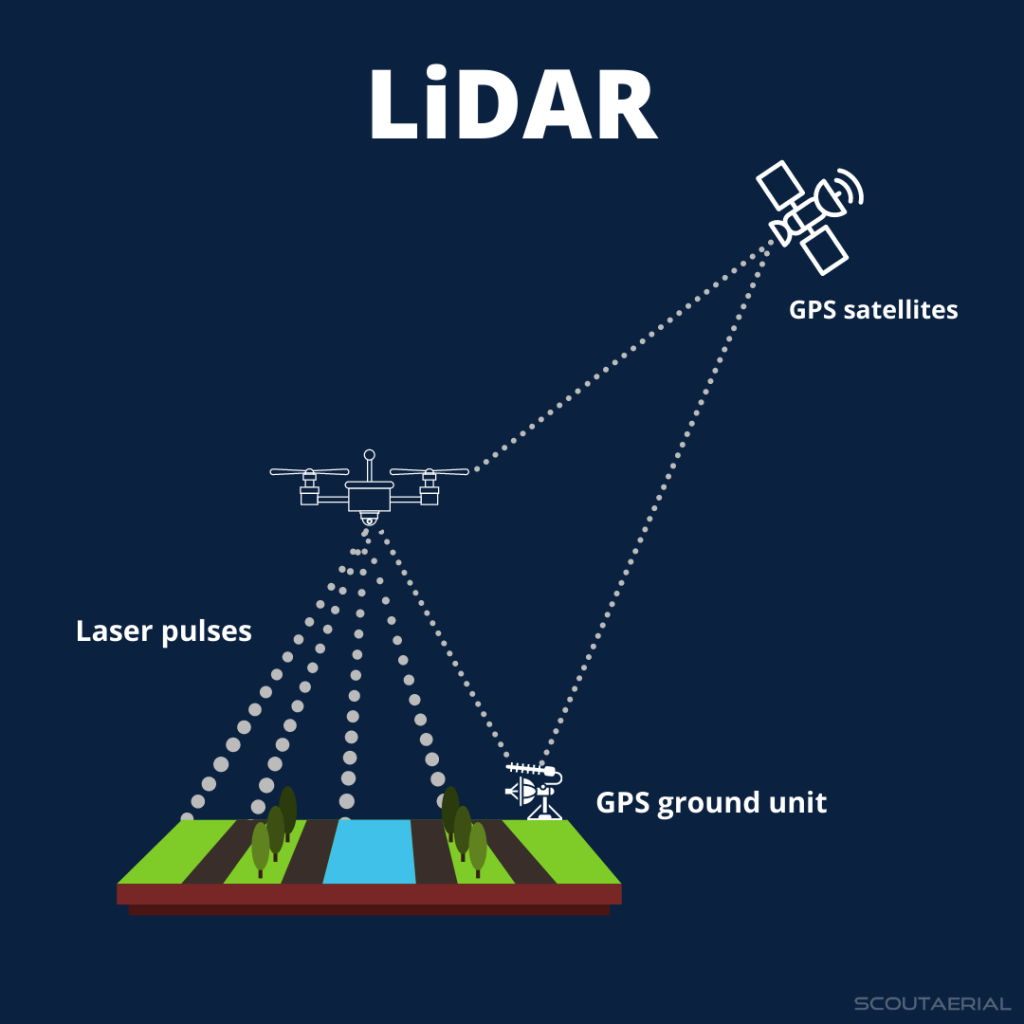
- 01 Nov 2024
In News:
LiDAR (Light Detection and Ranging) is a cutting-edge remote sensing technology that uses laser pulses to measure distances and create detailed 3D maps of Earth's surface. This technology has recently played a crucial role in discovering a lost Mayan city hidden under the dense Mexican jungle.
What is LiDAR?
- Definition: LiDAR is a remote sensing technology that uses pulsed laser light to measure distances and generate precise 3D models of Earth’s surface.
- Components: The system includes a laser, a scanner, and a GPS receiver. It is usually mounted on an aircraft to map large areas of terrain.
- Data Accuracy: LiDAR can create high-resolution 3D models with vertical accuracy up to 10 cm, making it highly precise for mapping ground elevation.
How LiDAR Works
- Laser Emission: LiDAR sends out rapid laser pulses toward the ground.
- Reflection: These pulses hit the Earth’s surface, reflecting off features like vegetation, buildings, and terrain.
- Measurement: The time it takes for the laser light to travel to the ground and back is measured, allowing the system to calculate the distance between the sensor and the surface.
- Point Cloud Data: The reflected light data is collected as a "point cloud", representing all the surfaces it hits, including trees, buildings, and other features.
- Refinement: This point cloud can be processed into a Digital Elevation Model (DEM), stripping away vegetation and structures to reveal the “bare earth,” which highlights features like roads, buildings, and hidden settlements.
Why LiDAR is Useful for Archaeologists
- Large-Scale Surveying: Traditional archaeological methods often involve labor-intensive fieldwork, such as walking over every square meter and manually cutting through thick vegetation. LiDAR, however, allows researchers to quickly survey vast areas of land, even through dense jungle, from the comfort of a lab.
- Visibility Under Vegetation: LiDAR’s ability to penetrate dense foliage and reveal features beneath the surface is a game changer. Even thick tree canopies that obscure the ground are no match for the laser pulses, which can pass through gaps to illuminate hidden structures.
The Discovery of the Lost Mayan City
- The City of Valeriana: Using publicly available LiDAR data from a forest monitoring project in 2013, archaeologist Luke Auld-Thomas discovered a lost Mayan city in Mexico’s Campeche region. The city, named Valeriana, had been hidden for centuries by the thick jungle.
- City Features: The city has all the hallmarks of a Classic Maya political capital, including:
- Multiple enclosed plazas
- Broad causeways
- Temple pyramids
- A ball court
- A reservoir formed by damming a seasonal watercourse
- Historical Significance: Valeriana is believed to date back before 150 CE and may have been a key political and cultural center in the Maya civilization.
Applications of LiDAR Beyond Archaeology
- Geography and Mapping: LiDAR is widely used to generate precise, three-dimensional data about the Earth’s surface, helping geographers and planners.
- Environmental Monitoring: It is also used in forest monitoring, flood risk assessment, and environmental conservation.
- Urban Planning and Engineering: Engineers use LiDAR for creating highly accurate topographical maps and planning infrastructure projects.
CRS Mobile App
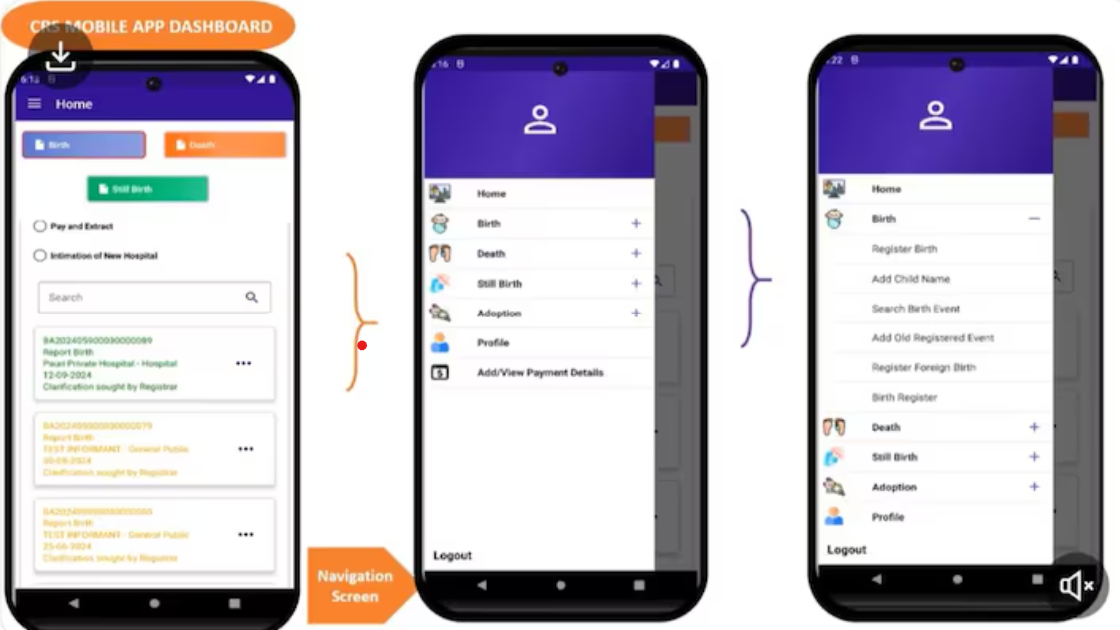
- 30 Oct 2024
In News:
- Recently, the Union Home Minister Amit Shah launched the Civil Registration System (CRS) mobile app.
- The app aims to integrate technology with governance by making the registration of births and deaths more accessible, seamless, and hassle-free.
Key Features of the App:
- Anytime, Anywhere Registration: Citizens can register births and deaths from anywhere and at any time, in their State’s official language.
- The app is designed to significantly reduce the time required for registration, making it more efficient and convenient for users.
Legal and Policy Background:
- The Registration of Births and Deaths (Amendment) Act, 2023 mandates that all births and deaths in India, occurring from October 1, 2023, must be digitally registered through the Centre’s portal: dc.crsorgi.gov.in.
- This move is part of the broader effort to digitize civil records and create a centralized database.
Benefits of Digital Registration:
- Digital Birth Certificates: The new system will issue digital birth certificates which will serve as a single document to prove the date of birth for various services, such as:
- Admission to educational institutions
- Applying for government jobs
- Marriage registration
- Centralized Database: The integration of birth and death data into a centralized database will help update critical records such as:
- National Population Register (NPR)
- Ration cards
- Property registration
- Electoral rolls
National Population Register (NPR) Integration:
- The data collected through the CRS app will assist in updating the National Population Register (NPR), which was first collected in 2010 and updated in 2015 through door-to-door enumeration.
- The NPR serves as the first step toward the creation of the National Register of Citizens (NRC) under the Citizenship Act, aimed at identifying Indian citizens.
Belt and Road Initiative (BRI)
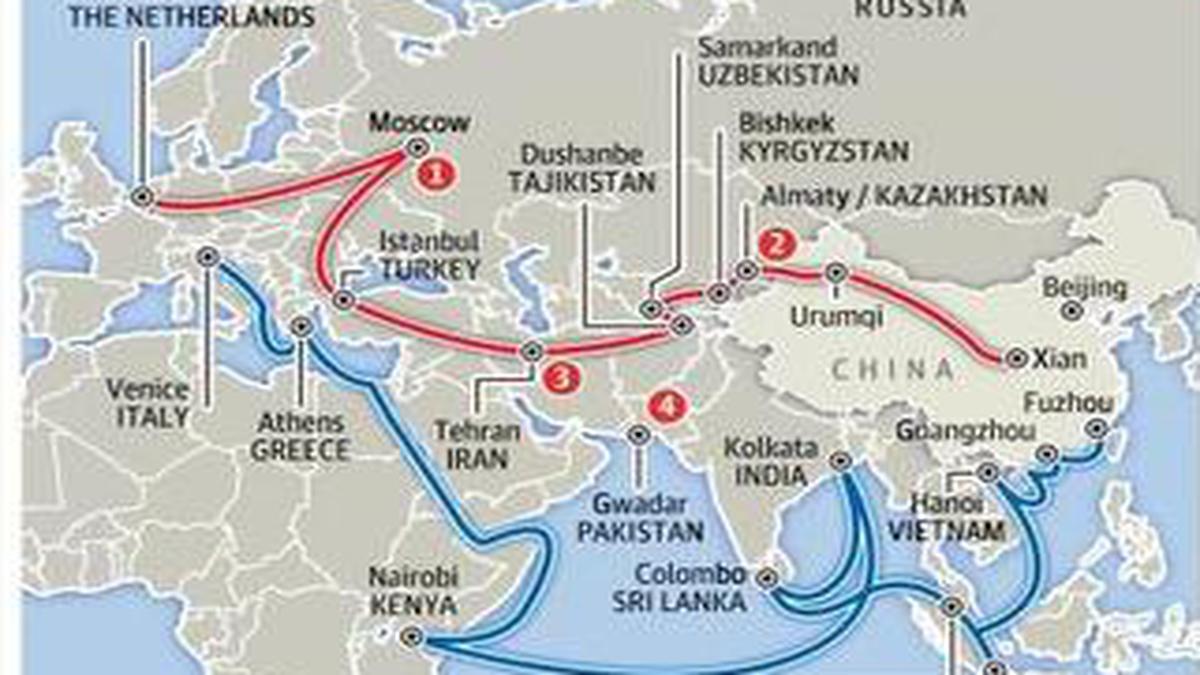
- 30 Oct 2024
In News:
- Brazilhas opted not to join China’s Belt and Road Initiative (BRI), becoming the second BRICS country after India to reject the multi-billion-dollar infrastructure project.
- Brazil prefers to explore alternative ways to collaborate with Chinese investors without signing a formal treaty, aiming to avoid the perceived risks of the BRI.
BRICS and India’s Role:
- Brazil’s decision follows India’s long-standing opposition to the BRI, particularly due to the China-Pakistan Economic Corridor (CPEC) passing through Pakistan-occupied Kashmir, which India views as a violation of its sovereignty.
- India has consistently argued that BRI projects should adhere to international norms, good governance, and transparency, emphasizing that such initiatives should be financially sustainable and not lead to debt traps.
Brazil’s Broader Economic Strategy:
- Brazil aims to balance its relationship with China, which is a major economic partner, but without being bound by the BRI. This decision reflects broader concerns within Brazil about the long-term financial sustainability of BRI projects, especially after witnessing debt crises in other countries like Sri Lanka.
Global Context and the BRI's Impact:
- The BRI, launched by China in 2013, spans several infrastructure sectors and has expanded globally, but it has faced criticism for its potential to trap smaller nations in unsustainable debt.
- India and Brazil’s resistance to the BRI highlights growing skepticism among emerging economies about the long-term implications of joining China's flagship project.
New Disability Certificate Rules (RPwD Rules, 2024)
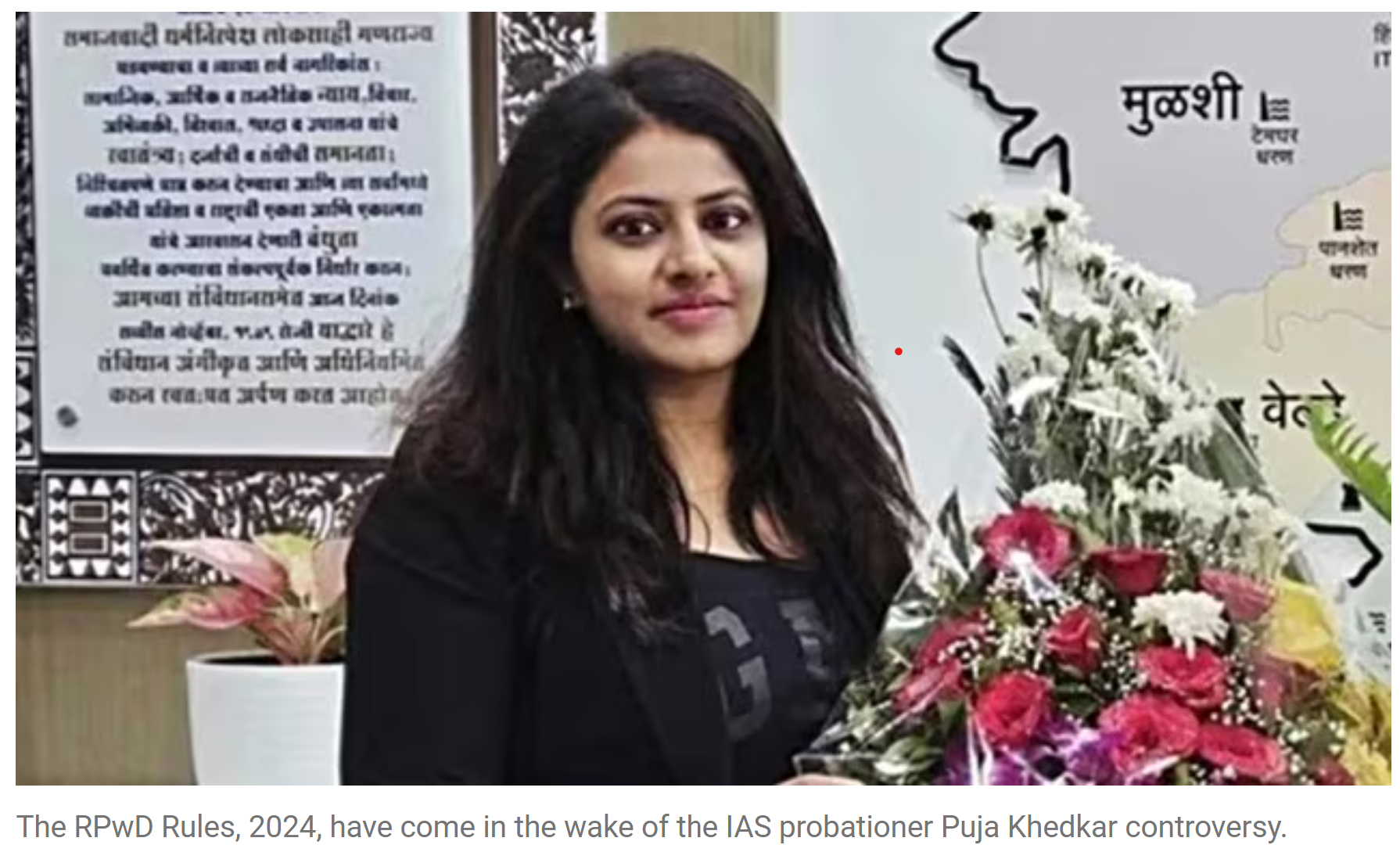
- 29 Oct 2024
In News:
- The Rights of Persons with Disabilities (RPwD) Rules, 2024, were amended by the Union Government in the wake of the Puja Khedkar controversy, where an IAS probationer was dismissed for alleged forgery in her disability and caste certificates.
- National Platform for the Rights of the Disabled (NPRD) has called for a rollback of the new rules, citing that they make the process of obtaining disability certificates more stringent and cumbersome.
Key Changes Under the New RPwD Rules, 2024
- Authority for Issuing Disability Certificates:
- Only a designated medical authority or a notified competent medical authority at the district level can issue disability certificates.
- NPRD had proposed that experts from non-profits also be authorized to carry out checks, but this suggestion was not accepted.
- Colour-Coded UDID Cards:
- The new rules introduce colour-coded UDID cards to represent levels of disability:
- White (general disability)
- Yellow (moderate disability)
- Blue (severe disability with 80% or higher).
- The new rules introduce colour-coded UDID cards to represent levels of disability:
- Mandatory Online Applications:
- Applicants are now required to apply for disability certificates online, which could be problematic for individuals who lack access to the internet, smartphones, or are digitally illiterate.
- The NPRD has urged the government to retain the option for in-person applications.
- Extended Time for Certificate Issuance:
- The new rules extend the time for issuing disability certificates from one month to three months.
- Reapplication Requirement:
- If there is no action taken on an application for two years, the applicant will have to reapply, which the NPRD considers unacceptable, as it punishes disabled individuals for system failures.
NPRD's Concerns
- Regressive and Burdensome:NPRD believes the amendments are regressive, adding more hurdles for genuine persons with disabilities to access certificates, which are crucial for identification and entitlement to services.
- Lack of Accountability:The NPRD argues that the rules do not address the systemic issues highlighted by the Puja Khedkar case, such as the lack of accountability at various levels in the certification process.
- Online Application Issues:Many people from the disabled community may struggle with technical jargon used in online applications and may not have the resources to complete the process digitally.
- Delay in Issuance:Extending the time for issuing certificates to three months could create delays for those in urgent need of certification for services or entitlements.
Greenhouse Gas Levels Hit Record High in 2023: World Meteorological Organization (WMO)

- 29 Oct 2024
In News:
According to the WMO, the last time the earth had a similar CO2 concentration was 3-5 million years ago, when temperatures were 2-3°C higher and sea levels were 10-20 metres higher than they are now
Key Highlights:
- Record High Greenhouse Gas (GHG) Levels:
- In 2023, annual mean carbon dioxide (CO2) levels rose by 2.3 parts per million (ppm), reaching a new record of 420 ppm.
- This marks the 12th consecutive year with an increase of over 2 ppm in CO2 levels.
- Historical Context:
- CO2 levels not seen in 3-5 million years, when temperatures were 2-3°C higher, and sea levels were 10-20 meters higher than they are today.
- Key GHGs at Record Highs:
- The globally averaged surface concentrations of CO2, methane, and nitrous oxide all reached new highs in 2023.
- Contributors to the Increase in CO2:
- Natural Variability: Natural factors such as large vegetation fires and reduced carbon absorption by forests contributed to higher CO2 levels.
- Human Activity: High fossil fuel emissions from human and industrial activities also played a major role.
- El Niño Phenomenon: The El Niño event led to higher temperatures and drier conditions, exacerbating the rise in GHG levels through increased wildfires and reduced carbon absorption by land sinks.
- Climate Feedback Loop Concerns:
- The WMO warned of a vicious cycle:
- Climate change could cause ecosystems to become larger sources of GHGs.
- Wildfires could release more carbon, and warmer oceans may absorb less CO2, leading to more CO2 remaining in the atmosphere, accelerating global warming.
- The WMO warned of a vicious cycle:
- Radiative Forcing:
- Radiative forcing (the warming effect on climate) from long-lived GHGs has increased by 51.5% from 1990 to 2023, with CO2 contributing 81% of this increase.
- Methane Concerns:
- Methane saw its largest three-year increase between 2020 and 2022.
- This increase was linked to warmer temperatures and wetter land conditions during the 2020-2022 La Niña conditions, which caused an uptick in methane emissions from natural wetlands.
- Long-Term Impact of CO2:
- Given CO2's long atmospheric lifetime, even with rapid emissions reductions, the warming effect will persist for several decades.
Emissions Gap Report 2024
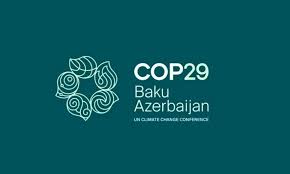
- 28 Oct 2024
In News:
The United Nations Environment Programme (UNEP) recently published the Emissions Gap Report 2024, in anticipation of the COP29 meeting of the UNFCCC to be held in Baku, Azerbaijan.
Key Highlights:
- Current Trajectory of Global Warming:
- If countries continue with current environmental policies, global temperatures are expected to rise by 3.1°C above pre-industrial levels.
- This is significantly higher than the Paris Agreement target of limiting global warming to well below 2°C, with an effort to cap it at 1.5°C.
- Paris Agreement at Risk:
- Even if all Nationally Determined Contributions (NDCs) are fully implemented (including both unconditional and conditional emissions reduction targets), the world would still experience 2.6°C of warming by 2030.
- This presents a major challenge to achieving the Paris Agreement’s climate goals.
- Urgent Need for Action:
- To limit global warming to 1.5°C, greenhouse gas emissions must peak before 2025 and decline by 43% by 2030.
- The report highlights the emission gap between current pledges and what is required to meet the 1.5°C goal.
- Record High Emissions:
- Global greenhouse gas emissions hit a record 57.1 gigatons of CO? equivalent in 2023.
- This represents an increase of 1.3% compared to 2022, continuing the upward trend from the previous decade.
- India’s Emissions:
- India’s greenhouse gas emissions grew by 6.1% between 2022 and 2023.
- Per capita emissions in India were 2.9 tCO?e in 2022, significantly lower than China (11 tCO?e) and the U.S. (18 tCO?e).
- G20 Countries’ Contribution:
- G20 countries, excluding the African Union, contributed 77% of global emissions in 2023.
- The six largest emitters (including China, U.S., and India) were responsible for 63% of global emissions.
- This shows a significant imbalance in emissions, with developed countries having much higher per capita emissions compared to developing nations like India and Africa.
- Necessary Emissions Cuts:
- To keep the 1.5°C target within reach, global emissions need to be cut by at least 7.5% annually until 2035.
- Cost of bridging the emissions gap: Achieving net-zero by 2050 will require USD 900 billion to USD 2.1 trillion annually, approximately 1% of global GDP.
- Emission Reduction Pathways:
- Renewable Energy: Scaling up solar and wind energy technologies could contribute up to 27% of the required emissions reductions by 2030.
- Forest Conservation: Protecting and restoring forests could provide 20% of the required emissions reductions by 2030.
- Other crucial measures include improving energy efficiency, transitioning to electric vehicles, and focusing on fuel switching in key sectors like transport, industry, and buildings.
- Disparities in Emissions:
- Despite changes over the past two decades, large disparities remain between emissions across regions.
- Developed countries have three times higher per capita emissions compared to the global average, while India, the African Union, and least developed countries continue to have much lower emissions.
- Call to Action:
- UNEP Executive Director Inger Andersen urged countries to act now, stating: “No more hot air, please.” The urgency is to ramp up climate pledges and ensure stronger actions in the upcoming COP29 talks in Baku, Azerbaijan (November 2024), where nations must work to get on a 1.5°C pathway.
United Nations Environment Programme (UNEP)
- Established: 1972, following the United Nations Conference on the Human Environment in Stockholm.
- Headquarters: Nairobi, Kenya.
- Governing Body: The United Nations Environment Assembly (UNEA), which is the world’s highest-level decision-making body on environmental matters, with 193 Member States.
- Programs & Initiatives: UNEP leads global efforts on climate action, ecosystem restoration, clean seas, and supports the Sustainable Development Goals (SDGs).
- Reports: UNEP publishes crucial assessments like the Emissions Gap Report, Global Environment Outlook, and Adaptation Gap Report, influencing global environmental policies.
2024 Global Nature Conservation Index (NCI)
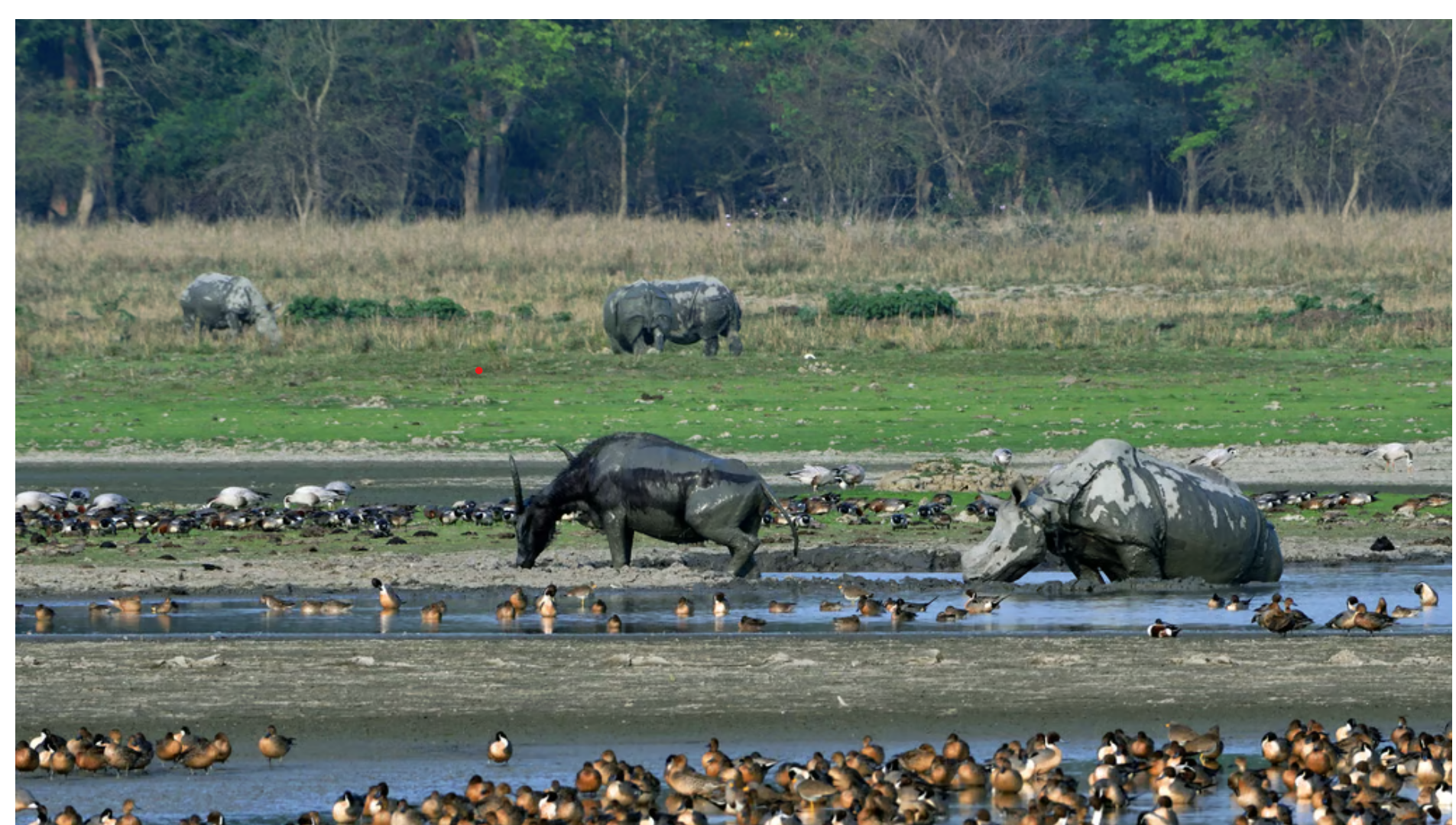
- 28 Oct 2024
In News:
India with an abysmal score of 45.5 (out of 100) has been ranked 176th in the Global Nature Conservation Index, 2024.
India's Ranking and Score:
- Rank: India ranks 176th out of 180 countries.
- Score: 45.5 out of 100.
- Context: India is listed among the five "worst performers," alongside Kiribati (180), Turkey (179), Iraq (178), and Micronesia (177).
Key Factors Affecting India’s Ranking:
- Inefficient Land Management: The main contributing factor to India's low ranking.
- Threats to Biodiversity: Rising threats due to habitat loss, deforestation, climate change, and pollution.
- Deforestation: Between 2001 and 2019, India lost 23,300 sq. km of tree cover, exacerbating biodiversity loss.
Focus Areas of the Nature Conservation Index (NCI):
- Land Management: Inefficient land use practices, with 53% of land converted for urban, industrial, and agricultural purposes.
- Biodiversity Threats: Habitat loss, fragmentation, and declining populations of marine and terrestrial species.
- Governance and Capacity: Challenges in enforcement of laws and governance structures that support conservation.
- Future Trends: India faces both opportunities and challenges, given its high population density and rapid development.
Key Findings:
- Land Conversion and Urbanization: High rates of land conversion (53%) for development purposes, contributing to habitat loss.
- Soil Pollution: Issues with pesticide use and soil pollution (low nitrogen index of 0.77), affecting soil health.
- Marine Conservation: Only 0.2% of national waterways and none within the Exclusive Economic Zone (EEZ) are protected.
- Deforestation Impact: Loss of 23,300 sq. km of forest between 2001-2019.
- Biodiversity Decline: Despite 40% of marine species and 65% of terrestrial species in protected areas, biodiversity continues to decline—67.5% of marine species and 46.9% of terrestrial species face population decreases.
Marine and Terrestrial Conservation:
- Marine Areas: Need for greater investment in marine conservation, as India's marine protected areas (MPAs) are limited.
- Protected Areas: While 7.5% of India’s terrestrial area is protected, significant threats like climate change and habitat fragmentation persist.
Biodiversity and Climate Change:
- Climate Change Risks: Impacts on vulnerable ecosystems, including coral reefs and alpine regions, further threaten biodiversity.
- Population Growth: India’s rapidly growing population (one of the highest in the world) places constant pressure on natural resources and ecosystems.
Illegal Wildlife Trade:
- Global Ranking: India is the fourth-largest illegal wildlife trader globally, with an annual trade worth approximately £15 billion.
- Call for Action: Stronger enforcement of wildlife protection laws and international cooperation are crucial to combat illegal wildlife trade.
SDGs and India’s Conservation Challenges:
- SDG 14 (Life Below Water) and SDG 15 (Life on Land): India faces significant challenges in meeting these Sustainable Development Goals, particularly in protecting marine life and terrestrial ecosystems.
Recommendations for Improvement:
- Stronger Political Will: Political commitment is essential for passing laws that promote sustainable development and biodiversity conservation.
- Enforcement and Funding: Increased funding for environmental initiatives and better enforcement of conservation policies are necessary to address the conservation challenges.
- Sustainable Development: Integrating sustainable land use practices and improving governance structures for conservation are key areas for focus.
New Space Missions and Developments
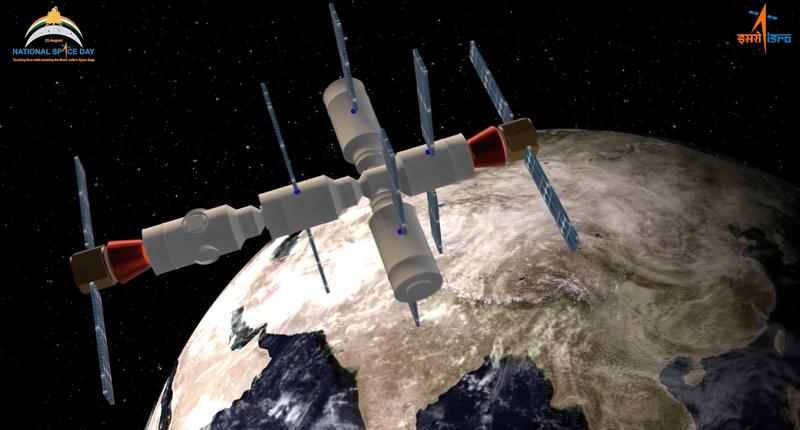
- 28 Oct 2024
In News:
The Space Commission also approved a joint moon mission with Japan called the Lunar Polar Exploration Mission. For LUPEX, ISRO is developing a different moon lander than the one it used for Chandrayaan-3
New Space Missions and Developments
- Chandrayaan-4 (Moon Mission):
- Type: Sample-return mission.
- Launch: Expected by 2027.
- Cost: ?2,104 crore.
- Objective: Sample collection of moon soil and rock to return to Earth.
- Mission Details: Two LVM-3 launch vehicles will launch components that will dock in Earth orbit before heading to the moon. The samples will be sent back using a bespoke canister.
- Lunar Polar Exploration Mission (LUPEX):
- Collaboration: Joint mission with Japan.
- Objective: Exploration of lunar poles with a new lander design, intended for potential crewed missions in future.
- Venus Orbiter Mission:
- Launch Window: March 2028.
- Cost: ?1,236 crore.
- Objective: Study Venus' surface and atmosphere to understand planetary evolution in the Solar System.
- Next Generation Launch Vehicle (NGLV):
- Development Budget: ?8,240 crore for first three development flights.
- Objective: A new launcher developed with private sector collaboration for future space missions.
Cabinet Approvals for Space Initiatives
- Human Spaceflight Programme (Gaganyaan):
- Four new missions under Gaganyaan, including an uncrewed Gaganyaan flight.
- Focus on developing technologies for India’s first space station, Bharatiya Antariksh Station (BAS), planned by 2028.
- Space-Based Surveillance (SBS) Missions:
- Phase 3: Approval for building 21 ISRO satellites, with 31 additional satellites by private companies.
- Total Cost: ?26,968 crore.
- Development of a Third Launch Pad:
- To support the NGLV and additional space missions at Sriharikota.
Upcoming Satellite Missions
- NISAR (NASA-ISRO Synthetic Aperture Radar):
- Launch: Early 2025 on a GSAT launch vehicle.
- Purpose: Earth observation using advanced radar technology.
- Issue: Protective coating added due to high temperatures during testing.
- Proba-3 (European Space Agency):
- Launch: November 29, 2024, aboard PSLV-XL.
- Objective: Study the Sun’s corona using two satellites in formation, mimicking an eclipse to capture unique solar data.
Private Sector Involvement
- Manastu Space & Dhruva Space:
- Collaboration: Testing green propulsion technology for the LEAP-3 mission.
- Technology: Hydrogen-peroxide-based green propulsion system.
- Launch: LEAP-3 mission in 2025.
- Bellatrix Aerospace:
- Project: Prototype satellite for ultra-low earth orbit at 200 km altitude.
- Ananth Technologies:
- Achievement: First private company to assemble, integrate, and test Space Docking Experiment (SpaDEx) satellites for ISRO.
Space Science and Research Updates
- Chandrayaan-3:
- Findings: The crater where Chandrayaan-3 landed is older than the South Pole-Aitken Basin (4.2-4.3 billion years old).
- Data Source: Optical High-Resolution Camera (Chandrayaan-2) and Pragyaan rover (Chandrayaan-3).
- Astrosat (India’s First Space Observatory):
- Mission Life: Expected to last two more years (originally planned for 5 years).
- Significance: Contributed to over 400 published papers based on multi-wavelength space observatory data.
National Mission for Manuscripts (NMM)
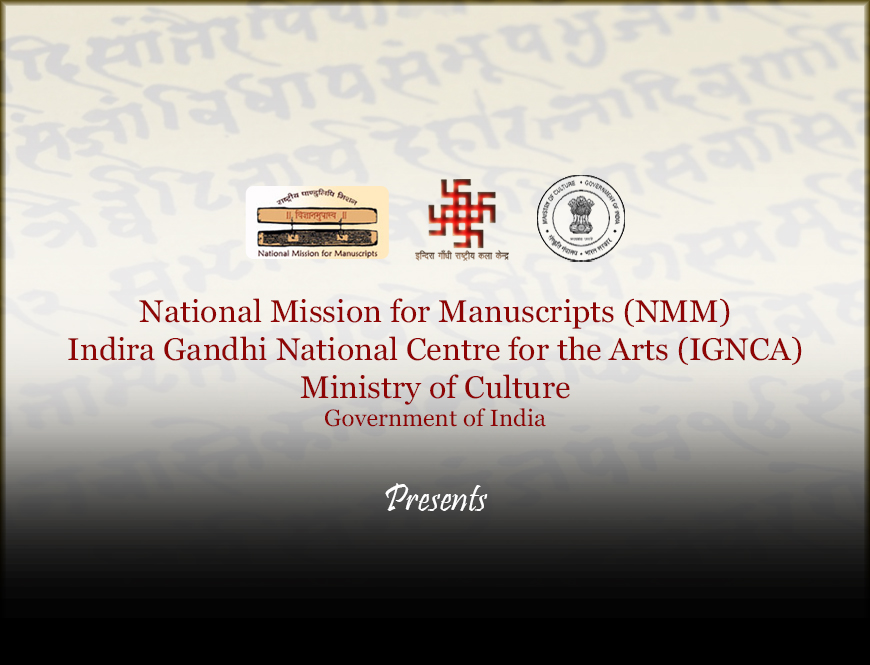
- 26 Oct 2024
In News:
- The Union Ministry of Culture plans to revive and relaunch the National Mission for Manuscripts (NMM) to enhance the preservation and accessibility of India’s ancient texts.
- The mission’s objective is to document, conserve, digitize, and disseminate India’s rich manuscript heritage, ensuring their protection and public access.
Formation of a New Autonomous Body:
- The National Mission for Manuscripts (NMM) is likely to be restructured into an autonomous body called the National Manuscripts Authority, which will be under the Ministry of Tourism and Culture.
- The new body will address the challenges and gaps in manuscript preservation and management, offering more focused and flexible governance.
Background and Achievements:
- Established in 2003, the NMM has been part of the Indira Gandhi National Centre for Arts (IGNCA).
- Key achievements:
- 52 lakh manuscripts have had metadata prepared.
- Over 3 lakh manuscripts have been digitized, though only one-third have been uploaded for public access.
- Preventive and curative conservation of over 9 crore folios of manuscripts has been undertaken over the last 21 years.
- The NMM has set up 100 Manuscripts Resource Centres and Manuscripts Conservation Centres across India.
Current Challenges and Gaps:
- Data Uploading and Access:
- Of the 130,000 digitized manuscripts, only 70,000 are accessible online due to the absence of a comprehensive access policy.
- A significant portion (around 80%) of manuscripts areprivately owned, restricting public access and usage.
- Digitization Mismatch:
- There have been concerns about discrepancies between the digitized data and the original manuscripts, which requires correction to ensure authenticity and accuracy.
- Lack of Comprehensive Access Policy:
- Limited public access to manuscripts due to policy restrictions hinders further research and public engagement with this rich heritage.
Scope and Future of NMM:
- India's Manuscript Heritage: India is believed to have around 10 million manuscripts, spread across various regions, languages, scripts, and topics.
- Digitization and Accessibility: Moving forward, the key challenge will be ensuring that a larger proportion of the manuscripts are digitized, uploaded, and made publicly available, particularly from private collections.
- The establishment of the National Manuscripts Authority is expected to streamline efforts and enhance coordination between government bodies, private institutions, and scholars.
Microfinance Institutions (MFIs)
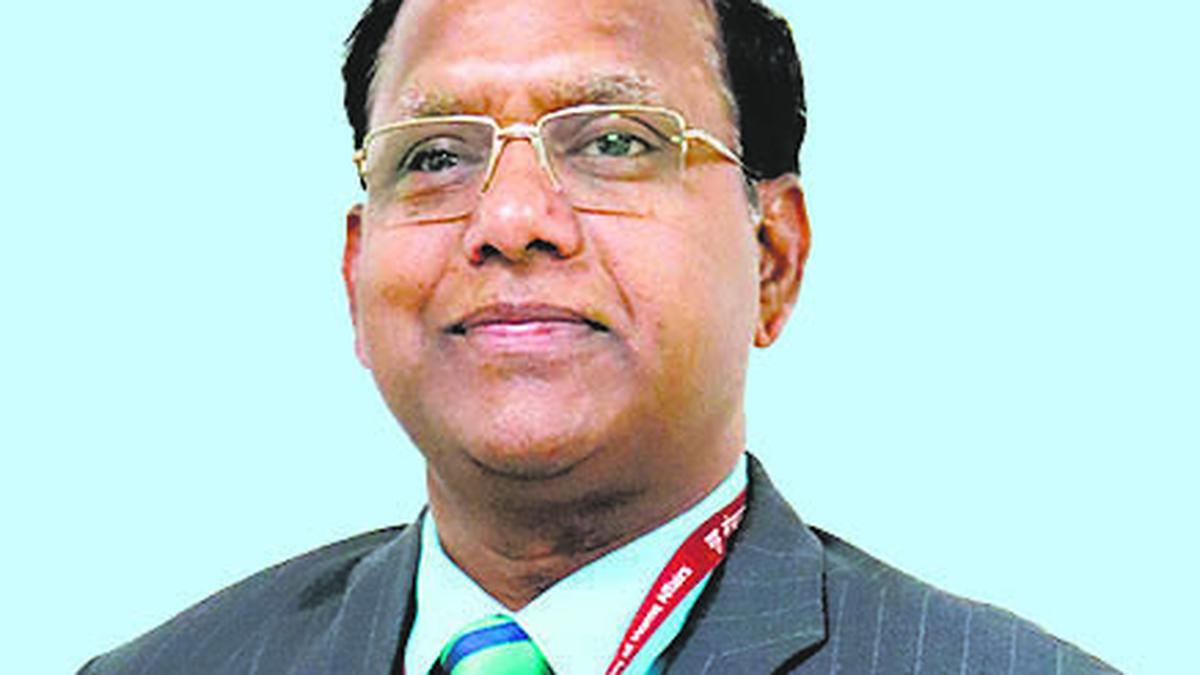
- 26 Oct 2024
In News:
Recently, the Financial Services Secretary stated that Microfinance institutions (MFIs) have played a crucial role in fostering financial inclusion but they should refrain from any reckless lending.
Microfinance Institutions (MFIs) and Financial Inclusion:
- MFIs provide small loans and financial services to low-income and marginalized groups, particularly those without access to formal banking services.
- Goal: To promote financial inclusion and empower marginalized communities, especially women, by enabling them to become self-sufficient and improve their socio-economic status.
- In India, over 168 MFIs serve around 3 crore clients across 29 states and 563 districts.
- The sector has grown significantly and is crucial for empowering Self-Help Groups (SHGs) and Joint Liability Groups (JLGs) to access credit and other financial services.
Concerns over Reckless Lending:
- The Financial Services Secretary, emphasized that MFIs should avoid reckless lending practices that could harm both borrowers and the sector.
- Poor underwriting and irresponsible lending could lead to unsustainable debt, especially for Self-Help Groups (SHGs) and Joint Liability Groups (JLGs) with limited financial literacy.
- Key Advice: Lending practices must be responsible, careful, and should aim to empower borrowers, not exploit their limited understanding.
Government Programs Supporting MFIs:
- SHG-Bank Linkage Programme: Over 77 lakh SHGs with a total loan outstanding of ?2.6 lakh crore, benefiting around 10 crore households.
- Lakhpati Didi Yojana: Aimed at empowering women, this scheme helps transform SHG members into women entrepreneurs.
Challenges Facing Microfinance Institutions:
- Regulatory Scrutiny: Many MFIs face scrutiny for high interest rates and non-compliance with borrower assessments. The RBI has urged MFIs to reassess lending practices.
- Over-Indebtedness: Many borrowers take loans from multiple MFIs, leading to unsustainable debt. As of March 2024, over 12% of borrowers had multiple loans, risking defaults.
- Low Financial Literacy: A significant challenge is low financial literacy among borrowers, which increases the risk of defaults and harms the reputation of MFIs.
RBI Guidelines on Microfinance (2022):
- Collateral-Free Loans: For households with income up to ?3 lakh, loans should be collateral-free.
- Repayment Cap: Monthly loan repayments should not exceed 50% of the borrower’s monthly income.
- Flexibility in Repayment: MFIs must offer flexible repayment options and ensure proper income assessment.
- Interest Rate Cap: The RBI has implemented guidelines to limit excessive interest rates charged by MFIs.
Government Schemes for Microfinance:
- Pradhan Mantri Mudra Yojana (PMMY): Provides financial assistance to non-corporate, non-farm small/micro enterprises.
- National Rural Livelihoods Mission (NRLM): Promotes rural livelihoods through the formation and capacity building of Self-Help Groups (SHGs).
- Deen Dayal Upadhyaya Antyodaya Yojana: Focuses on the empowerment of rural poor through skill development and income generation.
- Credit Guarantee Fund for Micro and Small Enterprises (CGTMSE): Provides guarantee cover to micro and small enterprises.
Way Forward for Microfinance Sector:
- Responsible Lending: MFIs must prioritize affordable lending practices, ensuring borrower’s repayment capacity is carefully assessed to avoid over-indebtedness.
- Enhancing Financial Literacy: MFIs should focus on financial education for borrowers, enabling them to make informed choices.
- Adherence to Regulatory Guidelines: MFIs should comply strictly with RBI regulations, including interest rate caps and borrower income assessments, to enhance sector transparency and trust.
- Malegam Committee Recommendations: Implementing suggestions like capping interest rates, tracking multiple loans, and improving transparency to prevent over-indebtedness.
- Diversifying Funding Sources: To reduce vulnerability to economic downturns, MFIs should work on diversifying their funding sources, reducing dependence on external capital.
Introduction to Innovative Cancer Detection Technique

- 25 Oct 2024
In News:
- Scientists have developed an ultrasound-based technique for detecting cancer, aiming to replace traditional biopsies, which are invasive and painful.
- Promising Alternative: The method uses high-energy ultrasound to release biomarkers (RNA, DNA, and proteins) from cancerous tissue into the bloodstream, allowing for early cancer detection with minimal discomfort.
- Presented at Acoustical Society Conference: The technique was discussed at the joint meeting of the Acoustical Society of America and Canadian Acoustical Association in May 2024.
Traditional Cancer Detection vs. New Ultrasound Approach
- Current Gold Standard - Biopsy: Traditionally, cancer is diagnosed using biopsies, where a tissue sample is extracted using a needle from suspected cancerous areas. Although effective, biopsies are invasive, painful, and carry some risks.
- Ultrasound as a Non-Invasive Alternative: The new method involves using high-frequency ultrasound waves to break off cancerous tissue into droplets, which are then released into the bloodstream. The biomarkers in the droplets can be analyzed for cancerous mutations.
- Enhanced Sensitivity: This ultrasound-based technique increases the levels of genetic and vesicle biomarkers in blood samples by over 100 times, enabling the detection of cancers and specific mutations that are otherwise undetectable in blood.
Key Findings of the Research
- Single Cancer Cell Detection: The technique allows for the detection of a single cancer cell in blood samples. It works by passing ultrasound waves through isolated blood samples, which break apart circulating cancer cells, releasing biomarkers into the blood.
- Cost-Effective: Traditional methods for detecting circulating cancer cells are costly (e.g., the ‘CellSearch’ test costs $10,000). In contrast, this ultrasound method can detect cancer with a much lower cost, around $100 (?8,400).
- Potential for Early Diagnosis: The research shows promise for detecting cancer at an early stage, even before symptoms appear, using blood samples.
Challenges and Next Steps
- Need for Large-Scale Clinical Trials: While the technique shows potential, large cohort studies involving diverse patient groups across different geographies and ethnicities are needed to validate the approach.
- Long-Term Study for Effectiveness: Further research is required to ensure the accuracy and reliability of the technique across various cancer types and to determine the ideal biomarker thresholds for early detection.
- Regulatory Approval and Commercialization: If the clinical trials yield positive results, the method could be commercially available in approximately five years, following regulatory approval.
Understanding Cancer and Its Types
- Cancer Definition: Cancer refers to the uncontrolled growth of abnormal cells that can form tumors and spread to other parts of the body.
- Types of Cancer:
- Carcinoma: Cancer originating in epithelial cells (e.g., breast, lung, prostate cancer).
- Sarcoma: Affects connective tissues like bones and muscles.
- Leukemia: Affects blood-forming tissues, leading to abnormal white blood cell production.
- Lymphoma: Begins in immune cells, including Hodgkin and non-Hodgkin lymphoma.
- Melanoma: Cancer of pigment-producing skin cells.
- Key Differences Between Normal and Cancer Cells:
- Cancer cells grow uncontrollably and evade immune detection.
- Cancerous cells accumulate chromosomal abnormalities, unlike normal cells, which follow regulated growth patterns.
National Workshop on SATHI Portal
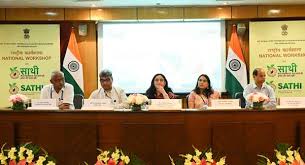
- 25 Oct 2024
In News:
Recently, the Department of Agriculture & Farmers' Welfare (DA&FW) organised a National Workshop on the SATHI (Seed Authentication, Traceability, and Holistic Inventory) Portal in New Delhi.
Key Highlights:
Purpose & Focus
- SATHI Portal: Focuses on Seed Authentication, Traceability, and Holistic Inventory to enhance seed certification, improve seed traceability, and streamline the seed supply chain.
- Primary Objective: Ensure availability of high-quality seeds to farmers through a transparent and efficient seed management system.
Key Features of the SATHI Portal
- Seed Certification: Aims to streamline seed certification processes across states for faster and more accurate seed certifications.
- Seed Traceability: Enhances transparency and traceability of seeds to ensure quality and authenticity.
- Inventory Management: The portal facilitates seed inventory management, helping farmers and stakeholders access reliable and transparent seed information.
- Technological Integration: Developed by the National Informatics Centre (NIC), the portal incorporates technology-driven solutions to minimize transactional time for registrations, approvals, and certifications.
Phase-II Rollout
- Focus on seed inventory management, with the objective of offering farmers reliable access to certified seed varieties.
- It aims to integrate state-specific seed processes into the national framework for greater standardization and efficiency.
Workshops & Technical Sessions
- NIC and ICAR Presentations: Covered the core components of the SATHI Portal, including:
- Seed Law Enforcement
- DNA Fingerprinting for ensuring seed authenticity.
- Seed Laboratory Processes to uphold quality control.
- Review of Phase-I: Discussions on achievements of Phase-I, focusing on improvements in seed certification processes across states.
- State Experiences: 10 state representatives shared insights on their experiences with the portal, discussing both benefits and challenges in the implementation phase.
Role of NIC & Technology
- The National Informatics Centre (NIC) is the technology partner behind the SATHI Portal, which is designed to enhance the efficiency of seed certification and inventory management.
- The portal contributes to larger digital initiatives like the Digital Agriculture Mission and Unified Farmer Service Platform (UFSP), which aim to support agricultural development through technology.
United Nations Day 2024
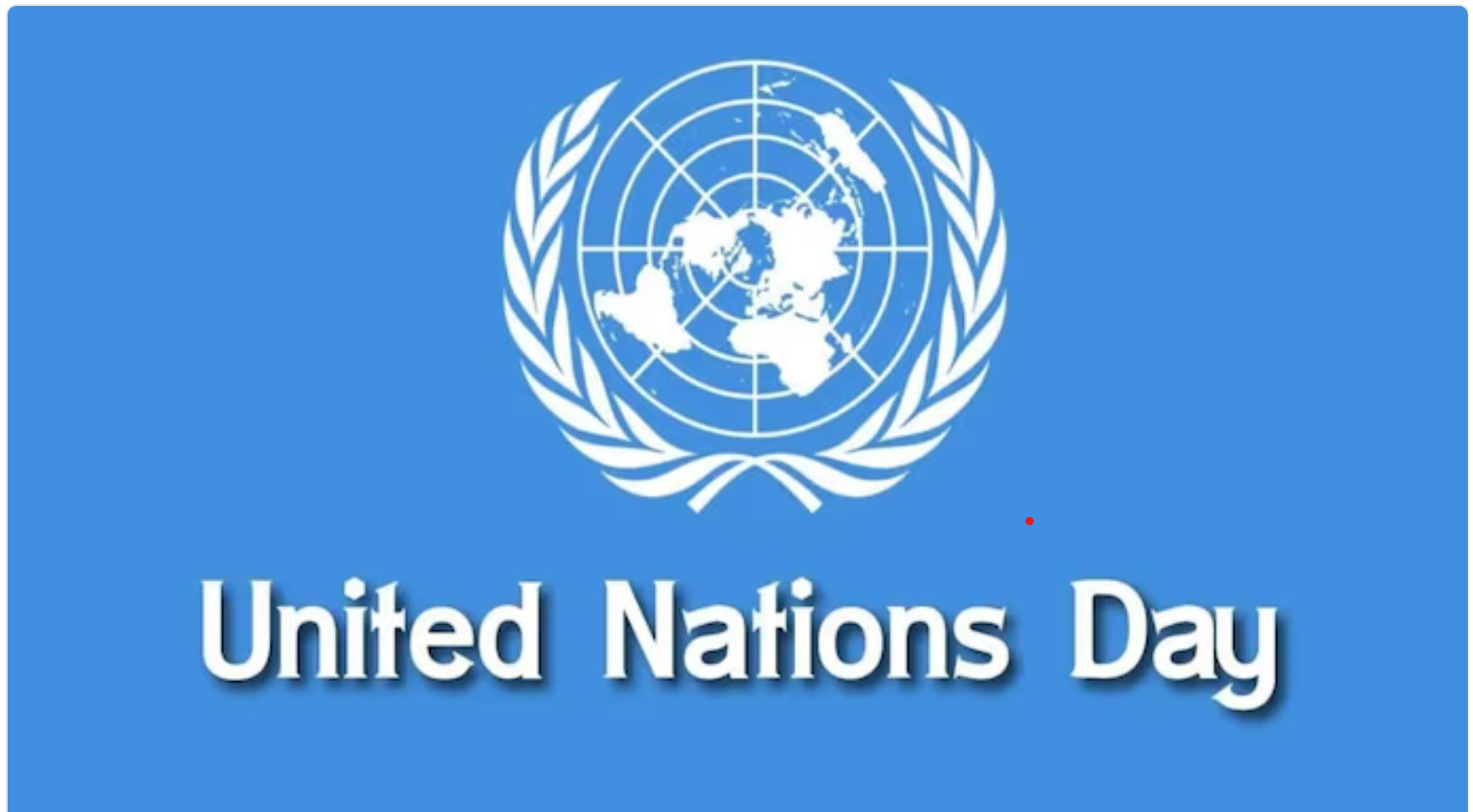
- 25 Oct 2024
In News:
United Nations Day is celebrated each year on October 24 to mark the anniversary of the UN Charter's entry into force, aiming to raise awareness about the goals and achievements of the international body.
Key Highlights:
- Purpose: Celebrates the anniversary of the UN Charter coming into effect on October 24, 1945, after World War II.
- Goal: Raise awareness about the UN’s objectives and accomplishments.
UN Charter Overview
- Signing & Implementation:
- Signed on June 26, 1945, in San Francisco.
- Came into effect on October 24, 1945.
- India ratified the UN Charter on October 30, 1945.
- Predecessor: The League of Nations, created in 1919 after WWI, aimed at promoting international cooperation and peace.
- Content:
- Foundational document of the UN, binding all member states.
- Establishes principles of international relations, including equality of nations and the prohibition of force between countries.
- Amended three times: 1963, 1965, and 1973.
UN's Core Objectives
- Peace and Security: Maintaining global peace and preventing conflicts.
- Humanitarian Aid: Providing assistance to those in need.
- Human Rights: Protecting and promoting human rights globally.
- International Law: Upholding the rule of law on the global stage.
Main Organs of the UN
- General Assembly (UNGA):
- Comprises all 193 Member States, each with one vote.
- Main policy-making body, addressing international issues covered by the UN Charter.
- Security Council (UNSC):
- Consists of 15 members (5 permanent, 10 elected for two-year terms).
- Permanent members: China, France, Russia, UK, USA.
- India has been elected to the UNSC eight times.
- Economic and Social Council (ECOSOC):
- Composed of 54 members elected by the General Assembly.
- Coordinates policy and addresses economic, social, and environmental issues.
- Trusteeship Council:
- Established to oversee trust territories transitioning to independence.
- International Court of Justice (ICJ):
- The only international court resolving disputes between UN member states.
- Handles contentious cases and provides advisory opinions.
- Secretariat:
- Led by the Secretary-General, appointed by the General Assembly based on Security Council recommendations.
- Acts as the chief administrative body of the UN.
Note: Most UN organs, including the UNGA, UNSC, ECOSOC, Trusteeship Council, and Secretariat, are based in New York, while the ICJ is located in The Hague, Netherlands.
Nobel Peace Prize 2024
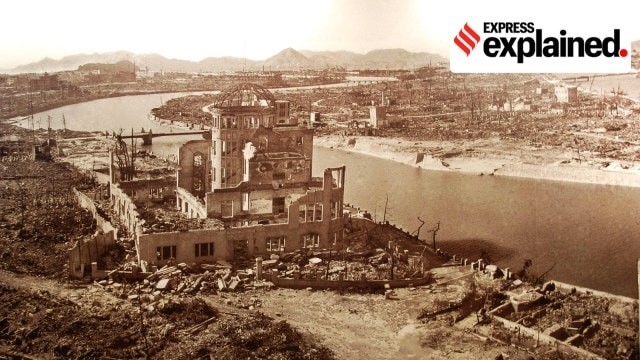
- 24 Oct 2024
In News:
The Nobel Peace Prize has been awarded to Nihon Hidankyo, an organisation of survivors of the Hiroshima-Nagasaki bombings. In doing so, the Nobel Committee has highlighted the power of their testimonies and the need for disarmament.
Key Points about Nihon Hidankyo and the Hibakusha Movement
- Nihon Hidankyo:
- Established on August 10, 1956, as the nation-wide organization for survivors of the Hiroshima and Nagasaki bombings.
- Focuses on the welfare of Hibakusha (A-bomb survivors), promoting nuclear disarmament, and advocating for compensation for victims.
- Works to share the stories and experiences of Hibakusha, both within Japan and globally.
- Hibakusha (Bomb-affected People):
- Survivors of the atomic bombings of Hiroshima and Nagasaki in 1945.
- Played a pivotal role in the global nuclear disarmament movement.
- Their testimonies have helped create the "nuclear taboo," ensuring nuclear weapons have not been used since 1945.
Role of Hibakusha in Nuclear Disarmament
- Global Impact:
- The bombings ignited a global movement for nuclear disarmament.
- Hibakusha's advocacy has highlighted the human cost of nuclear weapons, shaping international policy and promoting the nuclear taboo.
- Nihon Hidankyo’s Advocacy:
- The organization has been instrumental in documenting the effects of nuclear weapons and advocating for their abolition.
- Testimonies from Hibakusha have been key in raising awareness about the catastrophic humanitarian consequences of nuclear warfare.
Nobel Committee's Recognition and Current Nuclear Challenges
- Recognition of Hibakusha's Work:
- The Nobel Committee awarded the Peace Prize to Nihon Hidankyo for its role in promoting nuclear disarmament and for contributing to the nuclear taboo.
- The nuclear taboo is under increasing pressure as new countries seek nuclear weapons and existing powers modernize their arsenals.
- Current Nuclear Landscape:
- The US and Russia continue to maintain large nuclear stockpiles, with the US planning to spend over $1 trillion on upgrading its nuclear capabilities by the 2040s.
- New Threats: Geopolitical tensions, including regional conflicts, raise concerns about the resurgence of nuclear arms races.
Previous Nobel Peace Prizes for Disarmament
- Past Laureates:
- 1974: Former Japanese Prime Minister Eisaku Sato awarded for Japan's commitment to non-nuclear weapons policy.
- 2017: International Campaign to Abolish Nuclear Weapons (ICAN) awarded for its efforts to draw attention to the humanitarian consequences of nuclear weapons and push for a nuclear ban treaty.
- Link with Alfred Nobel’s Vision:
- Alfred Nobel, the founder of the Peace Prize, made his fortune with the invention of dynamite and sought to use his wealth to promote peace, especially through disarmament.
PM Young Achievers’ Scholarship Award Scheme for Vibrant India (PM YASASVI)
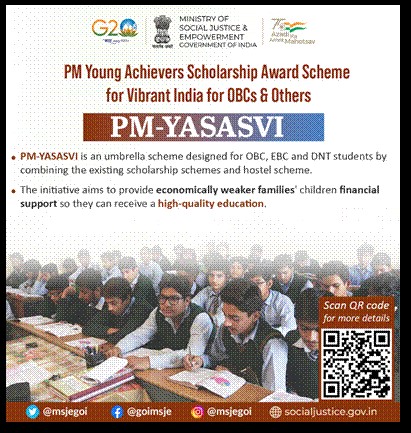
- 24 Oct 2024
In News:
With a vision of "Sabka Sath, Sabka Vikas", the Ministry of Social Justice and Empowerment has implemented the PM Young Achievers Scholarship Award Scheme for Vibrant India (PM-YASASVI).
- Objective of PM-YASASVI:
- The scheme aims to provide financial support and educational opportunities to students from Other Backward Classes (OBC), Economically Backward Classes (EBC), and Denotified Tribes (DNT).
- The goal is to help these students overcome financial barriers and pursue quality education, fostering a more inclusive and equitable society.
- Consolidation of Earlier Schemes:
- PM-YASASVI integrates multiple previous scholarship schemes:
- Dr. Ambedkar Post-Matric Scholarship for EBCs.
- Dr. Ambedkar Pre-Matric and Post-Matric Scholarship for DNTs.
- This consolidation aims to streamline the process and increase the impact on vulnerable groups.
- Key Components of the Scheme:
- Pre-Matric Scholarship: For students in Class 9-10 with annual family income below ?2.5 lakh. Provides ?4,000 annually.
- Post-Matric Scholarship: For students pursuing higher education, with academic allowances ranging from ?5,000 to ?20,000 based on course type.
- Top Class School Education: For meritorious students, offering ?1.25 lakh annually for students from OBC, EBC, and DNT categories in Classes 9-12.
- Top Class College Education: Covers tuition, living expenses, and educational materials for students in top institutions.
- Construction of Hostels for OBC Boys and Girls: Provides hostel facilities to socially and educationally backward students near government institutions.
- Scope and Financial Allocation (2023-24):
- Pre-Matric Scholarship: ?32.44 crore allocated to states and UTs for the year 2023-24, benefiting 19.86 lakh students.
- Post-Matric Scholarship: ?387.27 crore allocated for the year, benefiting 27.97 lakh students.
- Top Class School Education: ?6.55 crore for 2,602 students.
- Top Class College Education: ?111.18 crore for 4,762 students.
- Hostel Construction: ?14.30 crore allocated for the construction of hostels, accommodating 1,146 students.
- Key Benefits:
- Financial Assistance: Reduces the financial burden on students from marginalized communities, enabling them to continue their education without financial stress.
- Inclusive Education: Supports students from disadvantaged backgrounds, ensuring that they can access quality education from school through to higher education.
- Promotion of Merit: Focuses on meritorious students, ensuring that academic excellence is supported at all levels, from school to top-class institutions.
- Selection Process:
- The YASASVI Entrance Test (YET) is conducted by the National Testing Agency (NTA) for candidate selection under the scheme.
- Eligible students must appear for this test, and the results determine scholarship awards.
- Eligibility Criteria:
- The scheme is open to OBC, EBC, and DNT students with a family income not exceeding ?2.5 lakh annually.
- Additional specific eligibility criteria may apply for different scholarships under the scheme.
- Application Process:
- Interested students can apply for scholarships via the National Scholarship Portal (scholarships.gov.in), which is the official platform for application submission.
India-Pakistan Kartarpur Corridor Agreement Renewal
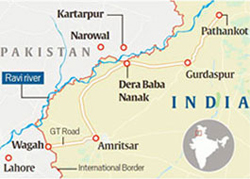
- 23 Oct 2024
In News:
- India and Pakistan have extended the Sri Kartarpur Sahib Corridor Agreement for another five years (until 2029).
- Purpose: The extension ensures uninterrupted operation of the corridor, allowing Indian pilgrims to visit Gurdwara Darbar Sahib Kartarpur in Pakistan.
- Significance: The extension reflects continued cooperation between India and Pakistan, with potential implications for improving bilateral relations.
Background of Kartarpur Corridor:
- Inception: The agreement was first signed on October 24, 2019, to allow visa-free access for Indian pilgrims to Gurdwara Darbar Sahib Kartarpur near Narowal in Pakistan.
- Pilgrimage Details:
- Eligibility: Indian nationals and Overseas Citizens of India (OCI) cardholders can visit the gurdwara on a daily basis.
- Return on Same Day: Pilgrims must return on the same day.
- No Religious Restrictions: Pilgrims of any faith can use the corridor.
- Capacity: Up to 5,000 pilgrims per day can visit the gurdwara.
- Historical Importance: The corridor facilitates the Sikh community's access to a key religious site, located just 4.7 km from the India-Pakistan border.
- Service Charge Dispute:
- Pakistan's Service Fee: Pakistan continues to charge a $20 service fee (approx. ?1,680) per pilgrim, which India has consistently urged Pakistan to waive.
- Pakistan’s Justification: Pakistan maintains the fee to cover the $17 million spent on refurbishing the gurdwara and developing infrastructure for the corridor.
- Geopolitical Context and Timing:
- Recent Developments: The agreement renewal follows External Affairs Minister S. Jaishankar’s visit to Pakistan to attend the Shanghai Cooperation Organization (SCO) Council of Heads of Government meeting.
- Improved Bilateral Relations: Jaishankar’s visit marked the first visit by an Indian foreign minister to Pakistan in nearly nine years, signaling potential thaw in relations, despite the lack of formal bilateral dialogue.
- Strategic and Religious Importance:
- Religious Diplomacy: The Kartarpur Corridor is viewed as a confidence-building measure and a symbol of religious diplomacy, particularly for the Sikh community.
- Historical Legacy: The corridor links Gurdwara Darbar Sahib Kartarpur in Pakistan to Gurdwara Dera Baba Nanak in India, facilitating access to a site of immense religious significance for Sikhs.
- Implications for India-Pakistan Relations:
- No Formal Bilateral Talks: Despite the successful renewal of the agreement, formal talks between India and Pakistan remain suspended, particularly after India’s revocation of Article 370 in Jammu and Kashmir in 2019, which led to a diplomatic freeze.
- Pakistan's Diplomatic Stance: Pakistan had recalled its high commissioner from India in August 2019, and tensions have remained high since then.
- Potential for Future Engagement:
- Diplomatic Channels Opened: The renewal of the Kartarpur agreement and Jaishankar’s visit suggest that diplomatic channels are still open, and there may be scope for further engagement if both sides take steps to address outstanding issues.
IMF retains India’s growth projection at 7% for FY25
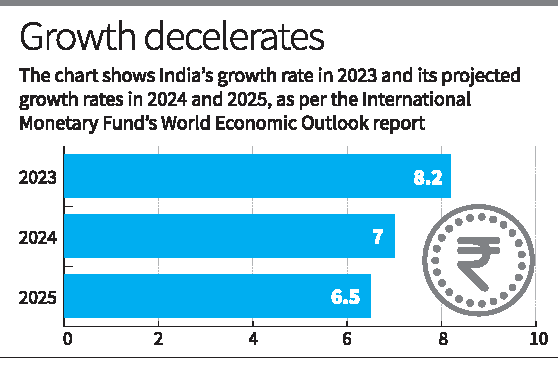
- 23 Oct 2024
In News:
The International Monetary Fund (IMF) has revised India's GDP growth forecast for the fiscal year 2024-25 to 7%, up by 20 basis points from its previous estimate of 6.8%.
- India’s Growth Projections:
- Current Fiscal Year (FY2024-25): India’s GDP growth is projected at 7%, unchanged from June 2024 estimates.
- Next Fiscal Year (FY2025-26): Growth expected at 6.5%.
- Growth Decline from FY2023 (8.2%): The slowdown is attributed to the exhaustion of pent-up demand post-pandemic and the economy returning to its potential.
- Global Economic Growth:
- World Output: Projected global growth at 3.2% in both 2024 and 2025.
- Advanced Economies: U.S. GDP growth revised upward to 2.8% in 2024 and 2.2% in 2025.
- Emerging Markets & Developing Economies: Growth revised upwards, largely due to stronger economic activity in Asia, with China and India being key contributors.
- Global Inflation and Monetary Policy:
- Inflation Decline: Global inflation has decreased from its peak of 9.4% in Q3 2022 to 3.5% projected by end-2025.
- Inflation Outlook: Despite reductions in inflation, price pressures persist in some regions.
- Monetary Policy Tightening: IMF acknowledges challenges due to tight monetary conditions in several economies and their potential impacts on labor markets.
- Global Risks and Challenges:
- Geopolitical Tensions: Ongoing Russia-Ukraine war and escalating conflicts in West Asia (e.g., Lebanon) have increased geopolitical risks, potentially affecting commodity markets.
- Protectionism: Growing protectionist policies worldwide are a risk to global trade and economic stability.
- Sovereign Debt Stress: Debt burdens in several countries could become a source of instability.
- Weak Chinese Economy: Slower-than-expected recovery in China remains a significant concern for global economic growth.
- Monetary Policy Risks: Prolonged tight monetary policies in some countries could impact labor markets and economic recovery.
- IMF’s Policy Recommendations for Medium-Term Growth:
- Monetary Policy Neutrality: Countries should adopt a neutral monetary policy stance to balance growth and inflation control.
- Fiscal Policy Adjustment: Build fiscal buffers after years of loose fiscal policy to ensure stability.
- Structural Reforms: Implement structural reforms to boost productivity and cope with challenges like aging populations, the climate transition, and the need for youth employment.
- India’s Economic Outlook - Key Drivers:
- Rural Consumption Growth: The upward revision of India's FY2024-25 GDP forecast to 7% is driven by improved consumption, especially in rural areas.
- Upward Revisions for 2023: The increased growth forecast also reflects positive carryover effects from India's 8.2% growth in 2023.
- Emerging Asia's Growth: The growth outlook for emerging Asia is supported by India and China, though long-term growth prospects for China are weaker (projected to slow to 3.3% by 2029).
- Global Economic Outlook:
- World Growth Projections: Global growth is expected to remain at 3.2% in 2024 and 3.3% in 2025.
- Diverging Growth Rates: Growth across economies is converging as output gaps close, particularly in advanced economies (e.g., U.S. labor market cooling, euro area recovery).
The case for a nature restoration law in India

- 22 Oct 2024
In News:
The Nature Restoration Law (NRL), which was enacted by the European Union (EU), is an inspiring model from which India can draw points to tackle its growing environmental crises.
Background of the NRL in the EU
- The Nature Restoration Law (NRL) was enacted by the European Union (EU) to restore ecosystems and combat biodiversity loss.
- Adopted on June 17, 2024, by the EU’s Environmental Council.
- Key objectives:
- Restore 20% of EU’s land and sea areas by 2030.
- Achieve full restoration of all ecosystems by 2050.
- Part of the EU’s Biodiversity Strategy for 2030 and European Green Deal.
- Target Areas:
- Forests, agricultural lands, rivers, urban spaces.
- Restoration measures include:
- 25,000 km of free-flowing rivers.
- Planting 3 billion trees by 2030.
- Global Impact: NRL is a critical tool in reversing Europe’s biodiversity loss, where 80% of habitats are in poor condition.
Environmental Crisis in India
- Land Degradation:
- 29.7% of India’s total geographical area is affected by land degradation (as per ISRO’s Desertification and Land Degradation Atlas, 2018-19).
- 97.85 million hectares of land degraded, with a significant increase since 2003-05.
- Major desertification hotspots in Gujarat, Karnataka, Maharashtra, and Rajasthan.
- Desertification: A growing concern, affecting 83.69 million hectares in 2018-19.
- Ongoing Efforts:
- Green India Mission, Pradhan Mantri Krishi Sinchayee Yojana, and National Afforestation Programme have had positive effects.
- Integrated Watershed Management Programme is the second-largest watershed programme globally.
Need for a Comprehensive Nature Restoration Law in India
- The scale of India’s environmental challenges requires a comprehensive nature restoration law similar to the EU’s NRL.
- The law should have legally binding targets to restore degraded landscapes and ensure ecosystem sustainability.
Key Features of an Indian Nature Restoration Law
- Restoration Targets:
- 20% of degraded land to be restored by 2030.
- Full restoration of ecosystems (forests, wetlands, rivers, agricultural lands, urban spaces) by 2050.
- Wetland Restoration:
- Target restoring 30% of degraded wetlands by 2030.
- Priority wetlands like Sundarbans and Chilika Lake play critical roles in biodiversity and carbon sequestration.
- Biodiversity in Agriculture:
- Promote agroforestry and sustainable agriculture practices.
- Use biodiversity indicators (e.g., butterfly or bird index) to monitor progress.
- River Restoration:
- Focus on free-flowing rivers such as the Ganga and Yamuna.
- Address pollution, obstructions, and ecosystem damage in major rivers.
- Urban Green Spaces:
- Ensure no net loss of urban green spaces.
- Promote urban forests in cities like Bengaluru and Delhi, where urban heat islands and air quality degradation are prominent.
Economic and Social Benefits of Ecosystem Restoration
- Global Economic Impact:
- Nature restoration could generate $10 trillion annually by 2030 (World Economic Forum estimate).
- Benefits for India:
- Agricultural Productivity: Restoring degraded land will enhance farm productivity.
- Water Security: Improved land restoration will contribute to better water availability.
- Job Creation: Millions of rural jobs could be created through ecosystem restoration efforts.
- Contributing to SDGs:
- The law would help India meet SDG 15 (sustainable management of forests, combating desertification).
- Climate Change Mitigation:
- Restoring ecosystems can help India enhance its carbon sinks, which is crucial for meeting Paris Agreement targets.
- Degraded lands lose their capacity to absorb carbon dioxide, contributing to global warming.
IAEA’s 2024 Climate Change and Nuclear Power Report
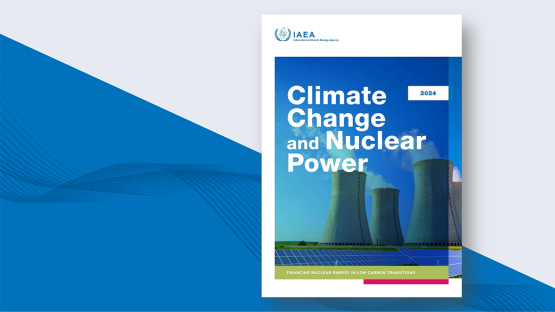
- 22 Oct 2024
In News:
- The 2024 edition of the IAEA’s Climate Change and Nuclear Power report has been released, highlighting the need for a significant increase in investment to achieve goals for expanding nuclear power.
- The new report was launched last week on the margins of the Clean Energy Ministerial (CEM) in Brazil.
Key Highlights:
- Nuclear Power's Role in Climate Change Mitigation:
- Nuclear energy is gaining global interest as nations seek to enhance energy security and decarbonize economies.
- To meet net-zero emissions by 2050, nuclear power is projected to play a pivotal role, with a projected capacity increase of 2.5 times the current level by mid-century in the IAEA's high case scenario.
- Investment Needs for Nuclear Expansion:
- Annual investment required to meet the IAEA's high case scenario (2050 nuclear capacity) is USD 125 billion, a significant increase from USD 50 billion annually from 2017-2023.
- If the aspirational goal to triple nuclear capacity (as pledged by over 20 countries at COP28) is to be met, USD 150 billion annually would be necessary.
- Challenges in Financing: Upfront capital for nuclear power plants is expensive, posing challenges, especially in market-driven economies and developing countries.
- Private Sector and Multilateral Support:
- The private sector will need to play a larger role in financing nuclear projects.
- The IAEA is engaging with multilateral development banks to improve financing options for developing countries to invest in nuclear energy.
- Private finance initiatives: In September 2024, 14 major financial institutions signaled readiness to help fund nuclear newbuild projects.
- Nuclear Financing at Clean Energy Ministerial (CEM):
- The IAEA report was launched during the 15th CEM in Brazil, a high-level forum for advancing clean energy technologies.
- Key stakeholders from Brazil, the IAEA, the International Energy Agency (IEA), and the U.S. discussed strategies for securing nuclear power financing, especially in the context of COP29 (2024) where clean energy financing will be a key focus.
- Nuclear Energy in the EU’s Sustainable Financing:
- The EU taxonomy for sustainable activities now includes nuclear power, facilitating the issuance of green bonds for nuclear projects in Finland and France (2023).
- EDF received €4 billion in green bonds and around €7 billion in green loans (2022-2024).
- Investment in Nuclear Power:
- To meet global climate goals, nuclear power capacity must increase by 1.8 times by 2035.
- Effective financing mechanisms are crucial to scale up nuclear power and develop the workforce and supply chains needed for the energy transition.
- Policy Reform and International Partnerships:
- The report advocates for policy reforms and international partnerships to bridge the financing gap and accelerate nuclear power deployment, particularly in emerging markets and developing economies.
- Focus on technologies such as small modular reactors (SMRs), which could play a role in the energy transition.
- Key Areas to Support Nuclear Growth:
- Robust regulatory frameworks and new delivery models are essential to unlock investments.
- Development of skilled labor and effective stakeholder engagement is crucial for the expansion of nuclear energy.
- Energy System Modelling and Planning:
- The IAEA’s energy system modelling tools assist countries like Brazil in planning nuclear power projects, including cost analyses for electricity generation and financing strategies.
Role of the International Atomic Energy Agency (IAEA):
- Mandate: The IAEA is the leading international body for promoting the safe, secure, and peaceful use of nuclear energy and technologies.
- Functions:
- Nuclear safeguards: Ensuring nuclear activities remain peaceful and preventing the diversion of nuclear materials for weapons purposes.
- Assisting member states with technical support, knowledge sharing, and strengthening nuclear safety and security.
- The IAEA also supports capacity-building and emergency response in case of nuclear or radiological incidents.
- Structure:
- The IAEA General Conference is made up of all 178 member states, meeting annually to approve budgets and policies.
- The Board of Governors (35 members) meets several times a year to oversee the agency's activities and appointments.
- Headquarters: Vienna, Austria
- The IAEA is part of the United Nations family, reporting to both the UN General Assembly and the Security Council.
Russia's Izdeliye 305 (LMUR) Missile
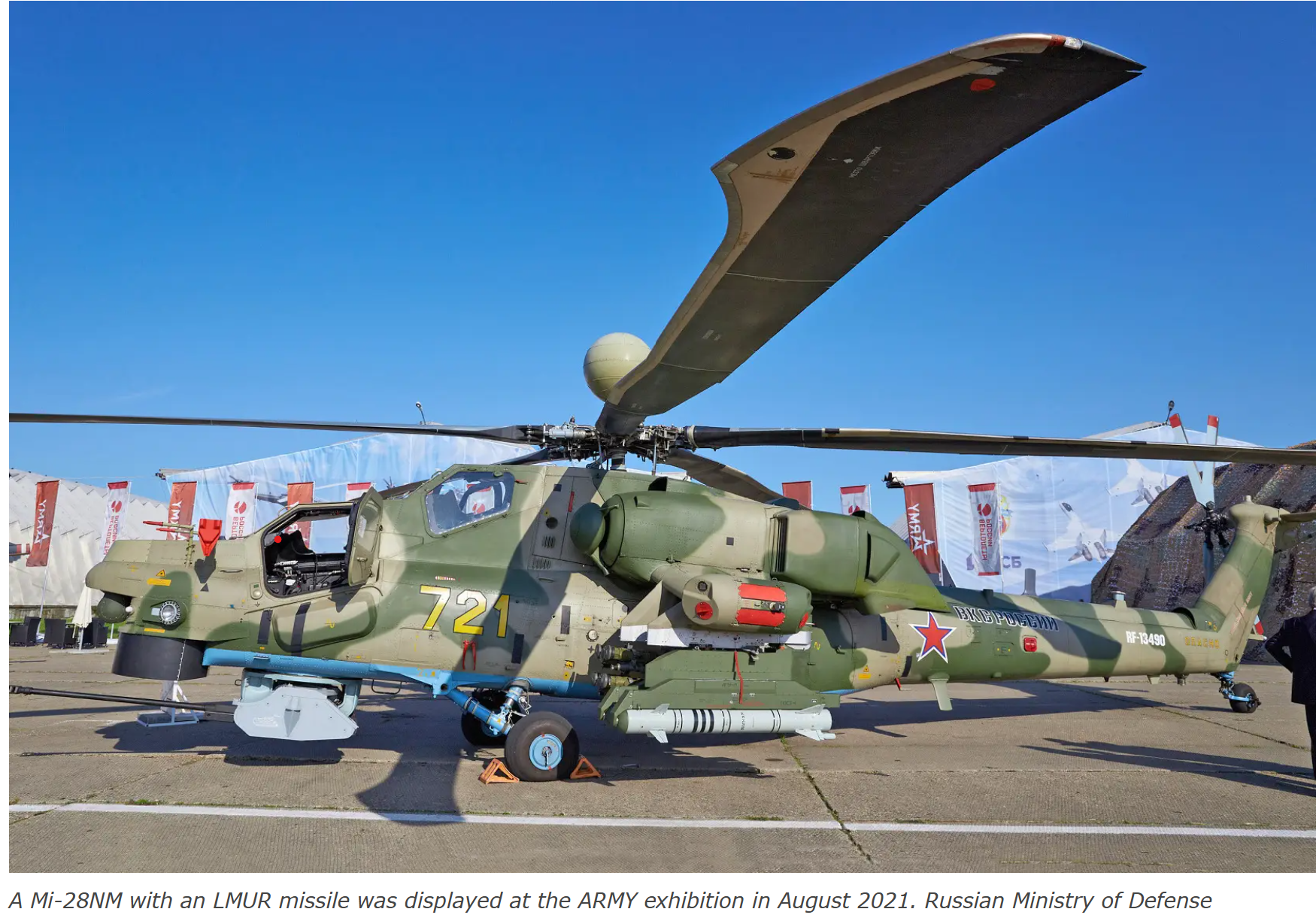
- 21 Oct 2024
In News:
Russian state corporation Rostec has claimed that its Light Multipurpose Guided Rocket, also known as Izdeliye 305 or “Product 305,” has demonstrated remarkable resistance to jamming and interference on the battlefield in Ukraine.
Missile Overview
- Name: Izdeliye 305 (Product 305), also known as LMUR (Light Multipurpose Guided Rocket)
- Primary Use: Deployed by Russia’s Mi-28NM and Ka-52M attack helicopters.
- Function: Designed to target and destroy armored vehicles, fortifications, pillboxes, and watercraft with high precision.
Key Features
- Sniper-Like Accuracy: The missile is touted for its exceptional precision in targeting, making it one of Russia’s most successful guided weapons.
- Resistance to Jamming: The missile’s control channel has shown remarkable resistance to enemy electronic warfare (EW) systems, making it effective even in contested environments.
- No instances of the missile's control channel being suppressed during the ongoing Ukraine conflict.
- Versatile Guidance Systems: The missile operates in several modes:
- Fire-and-Forget: The missile locks onto the target before launch and operates autonomously post-launch.
- Remote Control Mode: The operator guides the missile to the target after it locks onto coordinates and transmits live imagery to the operator’s screen.
- Inertial + Homing Mode: The missile initially flies inertially toward target coordinates, then activates its homing system for final target guidance.
- High Explosive Warhead: Equipped with a 25-kg high-explosive fragmentation warhead, the LMUR is effective against a variety of targets.
Technical Specifications
- Weight: 105 kg (231 lbs)
- Range: Up to 9 miles, double the range of traditional Russian anti-tank missiles, providing the tactical advantage of engaging from beyond line-of-sight.
- Warhead: 25 kg high-explosive fragmentation for effective target destruction.
- Guidance: A combination of inertial navigation, satellite positioning, thermal imaging, and a two-way communication channel for real-time control.
Deployment and Use
- Helicopter Integration: Primarily used on Mi-28NM and Ka-52M attack helicopters, and also on the Mi-8MNP-2 for special operations.
- Combat Experience:
- The missile was actively used in Ukraine where it played a key role in countering Ukraine’s NATO-backed counteroffensive operations.
- It was previously tested in Syria against various targets, showcasing its capabilities before full operational deployment in 2022.
Significance in Ukraine Conflict
- Impact on Ukrainian Forces: The missile’s long range and resistance to EW have made it a critical component of Russia’s aerial operations, hampering Ukraine’s battlefield progress, particularly against heavily fortified positions and NATO-backed counteroffensive efforts.
Strategic Advantage: The missile’s ability to engage targets from a distance while evading jamming attempts gives it a significant edge in modern warfare.
National Water Awards 2023

- 21 Oct 2024
In News:
The Hon’ble President of India Smt. Droupadi Murmu will confer the 5th National Water Awards 2023 on October 22nd 2024 at Vigyan Bhawan, New Delhi.
Organizing Body:
- Ministry: Ministry of Jal Shakti
- Department: Department of Water Resources, River Development, and Ganga Rejuvenation (DoWR, RD & GR)
- Purpose: To recognize and honor individuals, organizations, and bodies that have made significant contributions to water conservation and management.
Award Categories
- Best State
- Best District
- Best Village Panchayat
- Best Urban Local Body
- Best School or College
- Best Industry
- Best Water User Association
- Best Institution (other than school or college)
- Best Civil Society Organization
Winners
- Best State:
- 1st Prize: Odisha
- 2nd Prize: Uttar Pradesh
- 3rd Prize (joint): Gujarat & Puducherry
- Other Awards: Winners in the remaining categories have been recognized, with citations, trophies, and cash prizes provided in certain categories.
Objectives of the National Water Awards
- Promote Water Conservation: Raise awareness about the importance of water and encourage effective water usage practices.
- Recognize Efforts: Celebrate the work of individuals, institutions, and organizations contributing to the government’s vision of a ‘Jal Samridh Bharat’ (Water-rich India).
- National Campaign: Under the guidance of Hon’ble Prime Minister, the Ministry of Jal Shakti has been working to spread awareness on water management and conservation through extensive national campaigns.
History and Background
- The National Water Awards (NWAs) were launched in 2018 by the DoWR, RD & GR to foster awareness and action on water-related issues.
- Awards were given for 2019, 2020, and 2022, but there were no awards in 2021 due to the COVID-19 pandemic.
- The awards aim to inspire best practices in water usage, conservation, and management across India, involving government bodies, industries, communities, and civil society.
Significance
- The National Water Awards serve as a platform to recognize the innovative initiatives taken by various stakeholders in addressing water challenges.
The awards contribute to furthering the government’s mission of achieving sustainable water management practices across the nation.
New 'Lady Justice' Statue in the Supreme Court
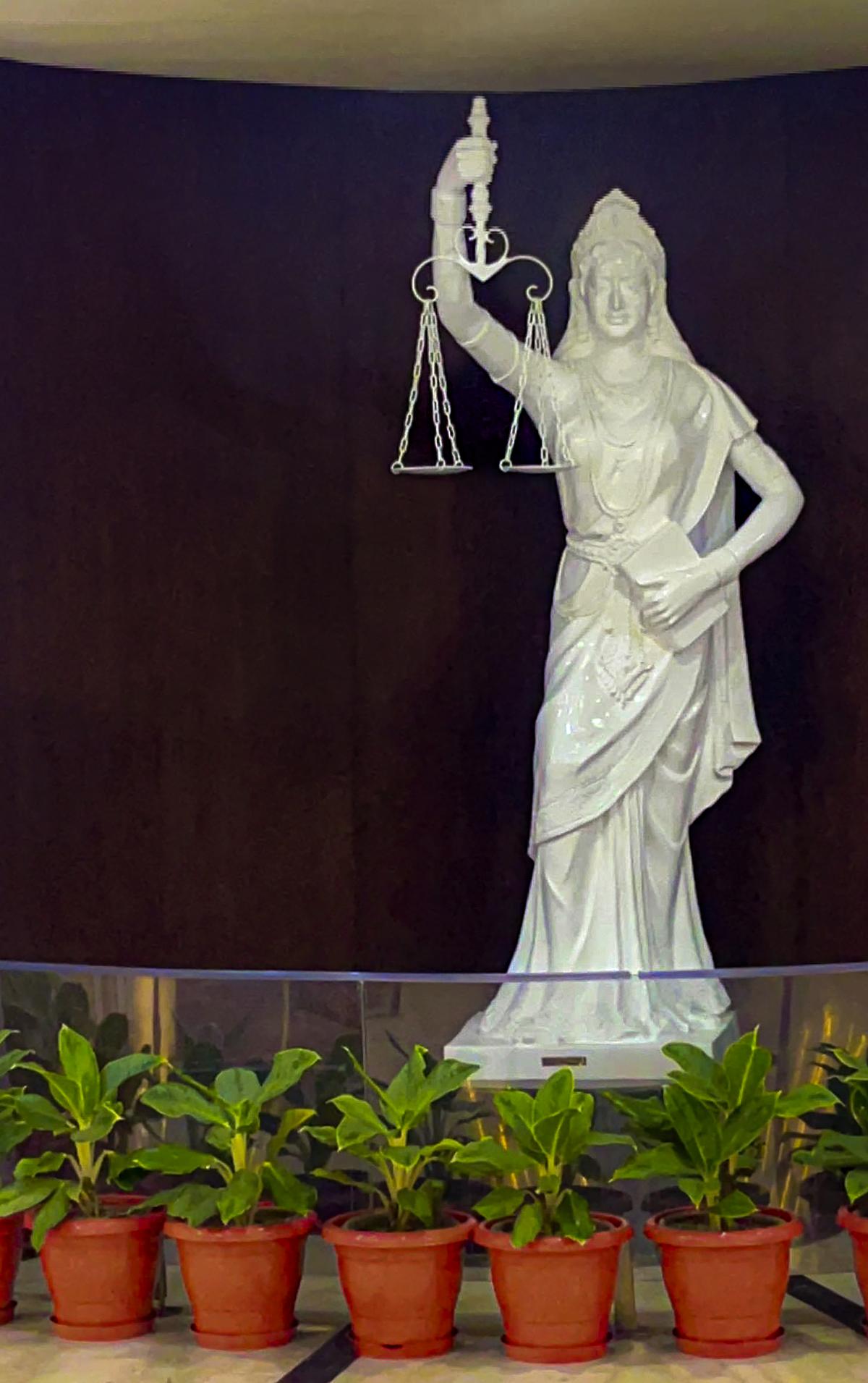
- 21 Oct 2024
In News:
Recently, the Chief Justice of India unveiled the ‘new lady justice’ statue in the Supreme Court premises that replaced the ‘original lady justice’. The new statue is clothed in a saree, has shed the blindfold and holds scales on one hand and the Indian Constitution on the other.
Symbolism of the New Statue
- Design:
- Clad in a saree, symbolizing Indian tradition.
- No blindfold, with open eyes, conveying that justice "sees" all equally.
- Holds the Indian Constitution in one hand and scales of justice in the other.
- Significance:
- Aimed at decolonization of the judiciary, replacing colonial symbols with representations that reflect India's identity and values.
- The open eyes represent that justice is not blind, addressing social diversity, discrimination, and constitutional provisions for upliftment of underprivileged sections.
- The Constitution in place of a sword symbolizes its supremacy in India’s legal system.
Historical Context of Lady Justice
- Origin:
- Rooted in Roman mythology; Justitia, the goddess of justice, symbolized by scales, sword, and a blindfold.
- Blindfold added in the Renaissance as a satire on corrupt legal systems but later reinterpreted as a symbol of impartiality, representing justice without bias, irrespective of wealth, power, or social status.
- Scales: Balance in weighing both sides before judgment.
- Sword: Authority and power of law, to protect and punish.
Rationale for Change in India
- Colonial Legacy:
- The 'lady justice' symbol became prominent during British rule, reflecting colonial influence in India's legal system.
- Decolonial Intent:
- The shift from Western attire (robe) to a saree connects the statue to Indian traditions.
- Open eyes emphasize that Indian justice is not blind and addresses social inequalities directly.
- The Constitution's prominence underscores its role as the supreme guiding document in the Indian legal system.
Current Judicial System Challenges
- Pending Cases:
- Over 5 crore cases are pending across courts in India.
- Supreme Court recently dismissed a petition for a three-year timeline to resolve the backlog, citing the overwhelming volume of cases.
- Urgent Reforms Needed:
- Finalize the Memorandum of Procedure:
- Still pending after 8 years; addresses transparency and accountability in judicial appointments.
- Representation in Judiciary:
-
- Backward classes, SCs, STs, and minorities are underrepresented in higher judiciary (less than 25%), and women are underrepresented (less than 15%).
- Appointments should reflect India's social diversity.
-
- Vacancies in Courts:
-
- High Courts operate at 60-70% strength, contributing to a massive case backlog of over 60 lakh cases.
- Lower courts have 4.4 crore pending cases; vacancies must be filled by states promptly.
- Priority for Constitutional Cases:
-
- Cases concerning the constitutional validity of laws and individual liberty should be prioritized by the judiciary.
Conclusion
- The new Lady Justice statue is not just a symbolic change but reflects a broader effort to realign India’s judiciary with its social and constitutional values.
- To ensure fair and prompt justice, there is an urgent need to address systemic delays, fill vacancies, and improve diversity in judicial appointments.
- Only then will the judiciary truly embody the principles of impartiality and justice, as represented by the new statue.
COP16 to the Convention on Biological Diversity (CBD)
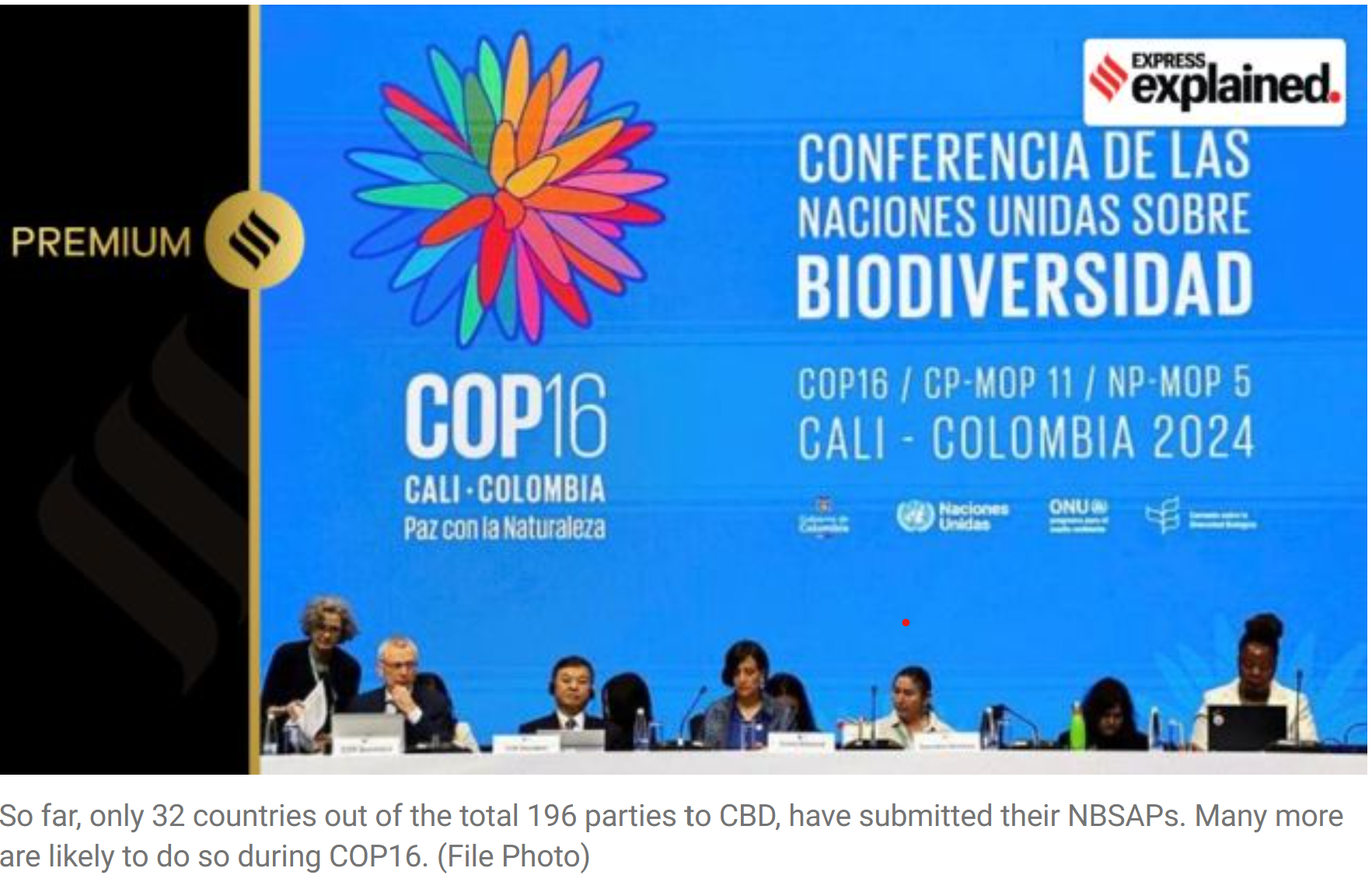
- 20 Oct 2024
In News:
The 16th Conference of the Parties (COP16) to the Convention on Biological Diversity (CBD) will take place in Cali, Colombia, from October 21, 2024. This marks the first gathering since the adoption of the Kunming-Montreal Global Biodiversity Framework (KMGBF) in 2022.
About Convention on Biological Diversity (CBD)
- Adopted in 1992, the CBD is the most comprehensive international treaty focused on biodiversity conservation, the sustainable use of natural resources, and the fair sharing of benefits derived from genetic resources. It has been ratified by 196 countries, making it a key global instrument for biodiversity governance.
Key Objectives of the CBD
- Conservation of Biodiversity: Protecting genetic, species, and ecosystem diversity.
- Sustainable Use of Resources: Ensuring resources are used in a way that does not deplete or degrade biodiversity.
- Fair Sharing of Benefits: Ensuring that benefits from genetic resources are shared equitably with countries of origin.
Notable Frameworks within CBD
- Nagoya Protocol (2010): Establishes a framework for the fair and equitable sharing of benefits from the utilization of genetic resources.
- Cartagena Protocol (2000): Regulates the transboundary movement of living modified organisms (LMOs) resulting from modern biotechnology.
The Kunming-Montreal Global Biodiversity Framework (KMGBF)
- Adoption: The KMGBF was adopted at COP15 in 2022, following the Kunming Declaration.
- Targets: The framework includes 23 targets for 2030 and 4 global goals for 2050, aimed at reversing biodiversity loss and promoting sustainability.
- Notably, the 30x30 Target aims for 30% of the world’s land and oceans to be conserved by 2030. This is a key agenda item at COP16.
- The framework also emphasizes equitable access to genetic resources and the sharing of benefits from their use (Target 13).
Challenges and Issues at COP16
- Benefit-Sharing from Digital Sequence Information (DSI):
- A key issue is the fair sharing of benefits from digital sequence information (DSI) on genetic resources. The adoption of a global mechanism for this issue is still pending, as negotiations between developed and developing countries remain unresolved.
- Developed nations advocate for unrestricted access to genetic materials in exchange for voluntary contributions to a global fund.
- Developing nations seek a more equitable system, aligned with the CBD's principles of fair benefit-sharing.
- A key issue is the fair sharing of benefits from digital sequence information (DSI) on genetic resources. The adoption of a global mechanism for this issue is still pending, as negotiations between developed and developing countries remain unresolved.
- 30x30 Target Progress:
- The 30x30 target, which aims to conserve 30% of land and oceans by 2030, is far from being met:
- 17.5% of land and 8.4% of oceans are currently under protection.
- Concerns persist about the effectiveness of these protected areas, as studies suggest they may not be sufficient for long-term biodiversity conservation.
- The 30x30 target, which aims to conserve 30% of land and oceans by 2030, is far from being met:
- Financial Commitments (Target 19):
- Developed countries have pledged $20 billion annually for biodiversity financing by 2025. However, progress is slow:
- By September 2024, only $8.2 billion (41% of the target) had been committed.
- COP16 will assess whether this target can be met, with further announcements expected.
- Developed countries have pledged $20 billion annually for biodiversity financing by 2025. However, progress is slow:
- Implementation Gaps:
- Countries are required to set national targets aligned with the KMGBF. As of COP16, only 100 parties have submitted their targets, and 30 countries have updated their National Biodiversity Strategies and Action Plans (NBSAPs).
- A significant implementation gap remains in translating these targets into concrete actions.
Focus Areas for COP16
- Strengthening the 30x30 Target:
- COP16 will push for enhanced efforts to meet the 30x30 conservation goal. There is a need for better management and monitoring of protected areas to ensure they contribute to biodiversity preservation.
- Finalizing Benefit-Sharing Mechanism:
- Countries will focus on finalizing the multilateral benefit-sharing mechanism for genetic resources and DSI. The goal is to ensure that countries benefiting from genetic resources share those benefits with the countries of origin, addressing the issue of biopiracy and ensuring equitable access.
- Financial Commitment and Tracking:
- The financial shortfall for biodiversity conservation will be a critical discussion point. Effective monitoring of the biodiversity finance tracker will be needed to ensure that developed countries meet their $20 billion/year commitment.
- Addressing Implementation Gaps:
- There is a need to enhance monitoring and reporting mechanisms, improve national strategies, and align financial support with on-ground conservation efforts.
eShram-One Stop Solution
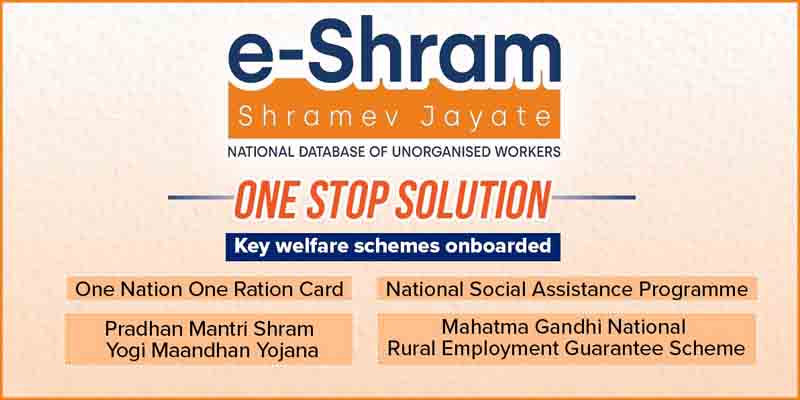
- 20 Oct 2024
In News:
- The ‘eShram-One Stop Solution’ will be launched on 21 October 2024 by the Union Minister of Labour & Employment and Youth Affairs & Sports.
- Objective: To provide easy access to various social security and welfare schemes for unorganized workers in India.
Key Features
- Mediator Platform: The eShram-One Stop Solution will act as an intermediary to facilitate the integration of multiple government schemes for unorganized workers, ensuring efficient access to services and support.
- Information Integration: It will integrate data on beneficiaries across various social security and welfare programs meant for unorganized workers, providing a single point of access.
- Target Group: Aimed at unorganized workers, including daily wage earners, migrants, and others who do not have regular formal employment.
Benefits
- Awareness & Accessibility: The platform will make unorganized workers aware of various government schemes tailored to their needs, helping them access benefits more easily.
- Effective Scheme Implementation: The eShram-One Stop Solution will aid in the identification and implementation of welfare schemes for faster saturation and coverage.
Integration with Existing Schemes
- 12 Integrated Schemes: Currently, 12 social security schemes from different ministries/departments have already been mapped with eShram.
eShram’s Progress So Far
- Launch: eShram was launched on 26 August 2021.
- Achievements: Over 30 crore unorganized workers have been enrolled, highlighting the widespread impact and popularity of the initiative among the target population.
Naseem-Al-Bahr 2024
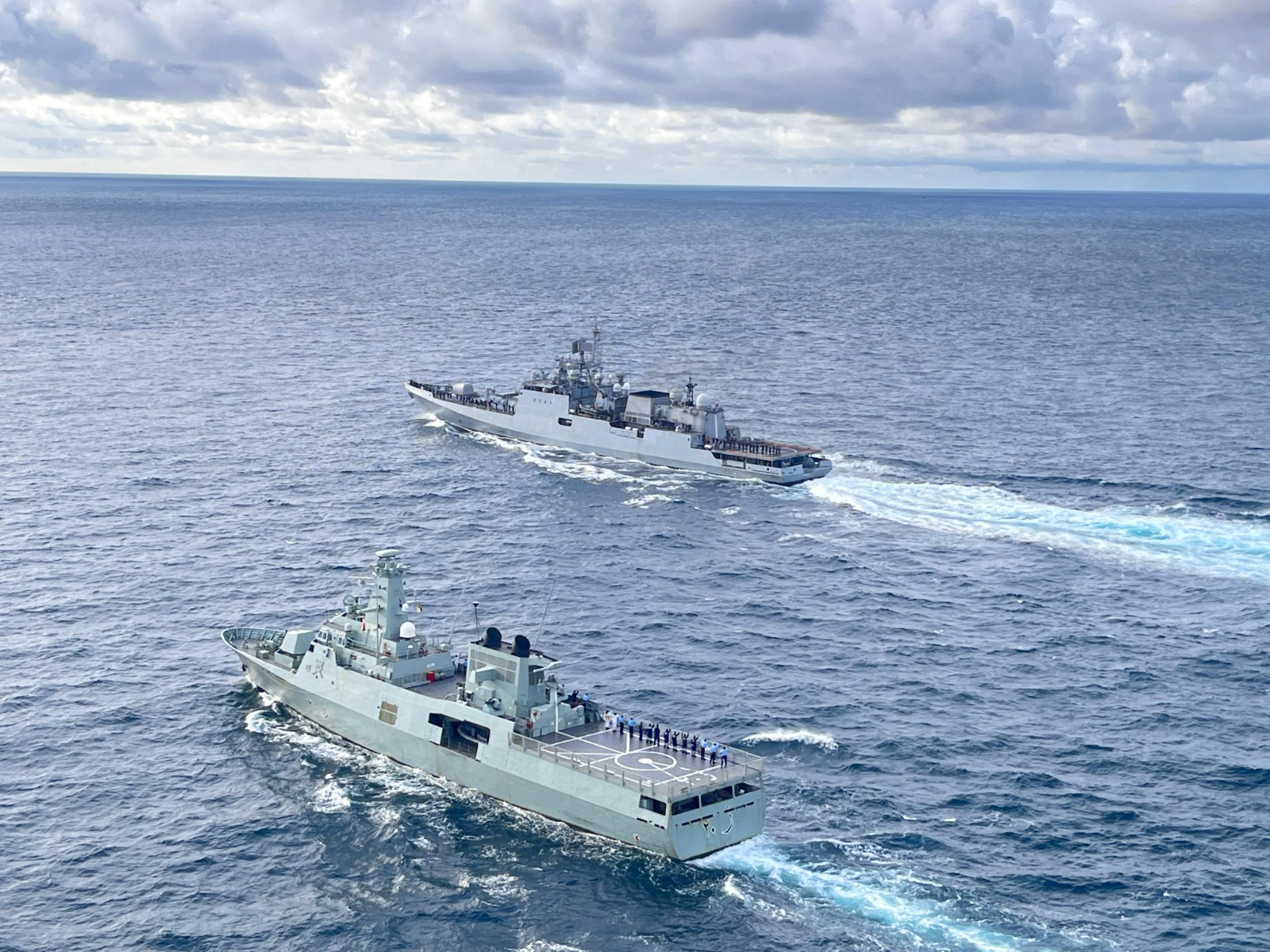
- 20 Oct 2024
In News:
Indo-Oman bilateral naval exercise Naseem-Al-Bahr was held in Goa from October 2024.
Naseem-Al-Bahr Exercise Overview
- Indian and Omani Participants:
- Indian Navy: INS Trikand (warship) and Dornier Maritime Patrol Aircraft.
- Royal Navy of Oman: Vessel Al Seeb.
- Initiation: Launched in 1993, marking a long-standing strategic partnership between India and Oman.
- Structure: The exercise is conducted in two phases:
- Harbour Phase:
- Professional Interactions: Subject Matter Expert Exchanges (SMEE), planning conferences.
- Social & Sports Engagements: Informal activities to foster mutual understanding.
- Sea Phase:
- Naval Operations:
- Gun firings at surface inflatable targets.
- Close-range anti-aircraft firings.
- Replenishment at Sea Approaches (RASAPS).
- Helicopter Operations: INS Trikand’s helicopter performed cross-deck landings and Vertical Replenishment (VERTREP) with RNOV Al Seeb.
- Aircraft Support: Dornier aircraft provided Over-the-Horizon Targeting (OTHT) data to enhance operational coordination.
- Naval Operations:
- Harbour Phase:
Key Highlights of the 2024 Exercise
- Interoperability: The exercise focused on improving operational coordination and enhancing mutual understanding of naval practices.
- Cohesion: The Indian Navy Sea Riders embarked on RNOV Al Seeb to further strengthen the bilateral relationship.
Strategic Significance
- Strengthening Ties: Naseem-Al-Bahr reaffirms the strong strategic relationship between India and Oman.
- Regional Collaboration: This exercise exemplifies India's growing collaboration with like-minded nations in the Indian Ocean Region (IOR).
- Broader Defence Relations:
- Oman is the first GCC country to conduct such bilateral naval exercises with India.
- Both countries also engage in other defence exercises:
- Army: Al Najah.
- Air Force: Eastern Bridge.
Trade Relations Between India and Oman (2022):
- Oil: India is the second-largest market for Oman's crude oil exports, following China.
- Non-oil Exports: India is Oman's fourth-largest market for non-oil exports, after UAE, US, and Saudi Arabia.
- Imports: India is the second-largest source of Oman's imports, following the UAE.
- Ongoing Trade Agreement: Both nations are currently negotiating a trade agreement to further boost bilateral economic cooperation.
Musaned Digital Platform
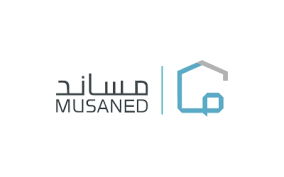
- 19 Oct 2024
In News:
Saudi Arabia Launches Musaned Digital Platform to Ensure Wage Protection for Foreign Workers.
Key Highlights:
- Purpose of Musaned:
- Musaned is a digital platform launched by Saudi Arabia to ensure wage protection and improve working conditions for foreign workers, particularly those in domestic (household) employment.
- The platform aims to safeguard workers' rights, create a stable working environment, and reduce illegal immigration.
- Coverage:
- The platform benefits foreign workers from 10 African countries (including Sudan, Ethiopia, Kenya) and 9 Asian countries (including India, Bangladesh, Pakistan, Vietnam, the Philippines, and Sri Lanka).
- Key Features:
- Employment Contract Access: Workers can check and track their employment contracts and receive updates via the Musaned labour app.
- Financial Transaction Tracking: The platform monitors financial transactions between employers and foreign workers, ensuring employers meet their contractual obligations.
- Integration with Benefits: Musaned can be linked to contract insurance and health benefits, providing additional protection for workers.
- Objectives:
- Wage Protection: Ensures timely and fair wages for foreign workers.
- Human Rights Protection: Promotes human rights by holding employers accountable for fulfilling their obligations.
- Vision 2030 Alignment: Supports Saudi Arabia’s Vision 2030 by improving the work environment and contributing to legal labor migration.
- Impact:
- The platform is expected to help secure workers’ rights, especially for domestic workers, and provide a more transparent, accountable framework for employment relations in the country.
Musaned is a significant step by Saudi Arabia to enhance the security and welfare of foreign workers, aligning with the Kingdom's broader goals of economic reform and social development under Vision 2030. The platform will provide greater transparency, protect workers’ rights, and contribute to a more regulated and sustainable labor market.
National Green Hydrogen Mission

- 19 Oct 2024
In News:
- The Union Government has sanctioned three pilot projects under the National Green Hydrogen Mission to explore the use of green hydrogen in steel production.
- The initiative aims to demonstrate safe and efficient hydrogen-based steelmaking processes, validate their technical feasibility, and evaluate economic viability for low-carbon steel production.
- Objectives of the Scheme:
- Identify and test advanced technologies for utilizing green hydrogen in the steel sector.
- Demonstrate safe and secure operation of hydrogen-based steel production.
- Validate technical and economic feasibility, contributing to decarbonization of iron and steel manufacturing.
- Pilot Project Components:
-
- 100% Hydrogen-based Direct Reduced Iron (DRI) using vertical shaft furnaces.
- Hydrogen use in Blast Furnace to reduce coal/coke consumption.
- Hydrogen injection in vertical shaft-based DRI units.
-
- Sanctioned Pilot Projects:
- Matrix Gas and Renewables Ltd
- Capacity: 50 tons per day (TPD).
- Consortium Partners: Gensol Engineering Ltd, IIT Bhubaneswar, Metsol AB (Sweden).
- Simplex Castings Ltd
- Capacity: 40 TPD.
- Consortium Partners: BSBK Pvt. Ltd., Ten Eight Investment, IIT Bhilai.
- Steel Authority of India Ltd (SAIL)
- Capacity: 3,200 TPD (Ranchi).
- Financial Support:
- Total Government Funding: ?347 crore for the three projects.
- These pilot projects are expected to be commissioned within the next three years and may serve as a blueprint for scaling up such technologies in India.
- About the National Green Hydrogen Mission:
- Launched: January 4, 2023.
- Total Budget: ?19,744 crore (up to FY 2029-30).
- Primary Goal: Establish India as a global hub for green hydrogen production and export while fostering decarbonization in sectors like steel, mobility, and energy.
- Key Features of the Mission:
- SIGHT (Strategic Interventions for Green Hydrogen Transition):
- Supports domestic manufacturing of electrolysers and promotes the production and use of green hydrogen.
- Expected Outcomes by 2030:
- Green Hydrogen Production: At least 5 million metric tons (MMT) annually.
- Renewable Energy: Addition of 125 GW in renewable energy capacity.
- Investment: Over ?8 lakh crore in green hydrogen technologies.
- Employment: Creation of 6 lakh jobs.
- Reduction in Fossil Fuel Imports: Savings of over ?1 lakh crore.
- GHG Emissions Reduction: Avoidance of nearly 50 MMT of annual greenhouse gas emissions.
- SIGHT (Strategic Interventions for Green Hydrogen Transition):
- Phase-wise Implementation:
- Phase I (2022-26): Focus on demand creation and initial deployment in existing hydrogen-using sectors (like steel and mobility).
- Phase II (2026-30): Expansion to new sectors with a push toward commercialization of green hydrogen.
The National Green Hydrogen Mission aims to significantly decarbonize India’s steel sector and other industries by leveraging hydrogen technology. With ?347 crore allocated for pilot projects in steelmaking, the initiative sets the stage for scalable, low-carbon steel production, contributing to India's clean energy transition and supporting its goal to become a global leader in green hydrogen.
Next Generation Missile Vessels (NGMV)

- 19 Oct 2024
In News:
GE’s LM2500 Marine Engines to Power Indian Navy’s Next Generation Missile Vessels (NGMV)
Key Highlights:
- Engine Selection:
- General Electric’s LM2500 marine gas turbines have been chosen to power the Indian Navy's Next Generation Missile Vessels (NGMV), currently being built by Cochin Shipyard Limited (CSL).
- Project Details:
- Number of Vessels: Six NGMVs are under construction.
- Contract Value: ?9,805 crore, awarded by the Defence Ministry.
- Delivery Schedule: The first deliveries are expected to commence in March 2027.
- Key Components and Suppliers:
- GE Aerospace will deliver six LM2500 engine kits to Hindustan Aeronautics Limited (HAL) for assembly and testing at their Industrial and Marine Gas Turbine Division in Bengaluru.
- GE will also supply the composite base, enclosure, and a full set of auxiliary systems for the gas turbines.
- LM2500 Marine Gas Turbine:
- The LM2500 turbine is known for its reliability and high power output, making it ideal for the NGMV mission.
- Top Speed: 35 knots (64 km/h).
- It is central to the propulsion system, meeting the stealth and power demands of the new missile vessels.
- Capabilities of NGMVs:
- Role: Designed for offensive missions, the NGMVs will be equipped for anti-surface warfare, maritime strike operations, and sea denial.
- Speed & Stealth: Capable of speeds up to 35 knots while maintaining stealth, these vessels will be difficult for enemy ships to detect.
- Weapons: They will carry a variety of anti-surface weapons, including the BrahMos supersonic cruise missile, loitering munitions, unmanned vehicles, and other guided weapons.
- Operational Roles:
- Offensive: The NGMVs will engage in attacking enemy warships, merchant ships, and land-based targets.
- Defensive: They will also be used for local naval defense operations, including the seaward defense of offshore development areas and defending choke points.
- Strategic Importance:
- The NGMVs will significantly enhance India’s maritime strike capability and provide a formidable presence in strategic sea routes, especially in regions like choke points and offshore development areas.
- Cochin Shipyard’s Role:
- After successfully constructing INS Vikrant, India’s first indigenous aircraft carrier, CSL is now focusing on the NGMV project, along with building anti-submarine warfare shallow water crafts for the Indian Navy, currently in various stages of construction.
- Partnerships:
- In 2023, GE Aerospace and HAL signed a Memorandum of Understanding (MoU) to expand their collaboration on marine gas turbines, including assembly, inspection, and testing (AIT) of the LM500 turbines.
- To date, GE Aerospace has delivered 24 marine gas turbine kits to HAL, supporting India’s Make-In-India initiative.
- Global Impact:
- The LM2500 gas turbine is used by 714 vessels globally, reinforcing its reputation for reliability and availability in critical maritime defense systems.
First Chief Minister of J&K UT Takes Charge

- 19 Oct 2024
In News:
Omar Abdullah sworn in as J&K CM; Surinder Kumar Choudhary is Deputy CM
Key Highlights:
- Omar Abdullah’s Political Context:
- This marks Omar Abdullah's second term as Chief Minister, after his tenure in 2009.
- He becomes the first Chief Minister of Jammu and Kashmir after the region’s special status was revoked and it was reorganized as a Union Territory in 2019.
- Challenges as CM of a Union Territory:
- Omar Abdullah acknowledged the unique challenges of serving as Chief Minister in a Union Territory and expressed hope that J&K’s Union Territory status would be temporary.
- Public Service and Security Measures:
- In his first official instructions, Abdullah asked the Director General of Police (DGP) to avoid creating “green corridors” or traffic halts during his movements. He also requested the minimization of sirens and aggressive security gestures, emphasizing minimal public inconvenience.
- Legal Context:
- Oath of Office: As per Article 164(3) of the Indian Constitution, the Chief Minister and other ministers are sworn in by the Governor or Lieutenant Governor in Union Territories.
- Abdullah is the first CM of the Union Territory of Jammu and Kashmir post the abrogation of Article 370 and the transition of J&K from a state to a Union Territory in 2019.
- Revocation of President's Rule:
- President’s Rule (under Article 356) was revoked following the election results, signaling the restoration of a functioning elected government after direct central governance in the region.
Karmayogi Saptah – National Learning Week
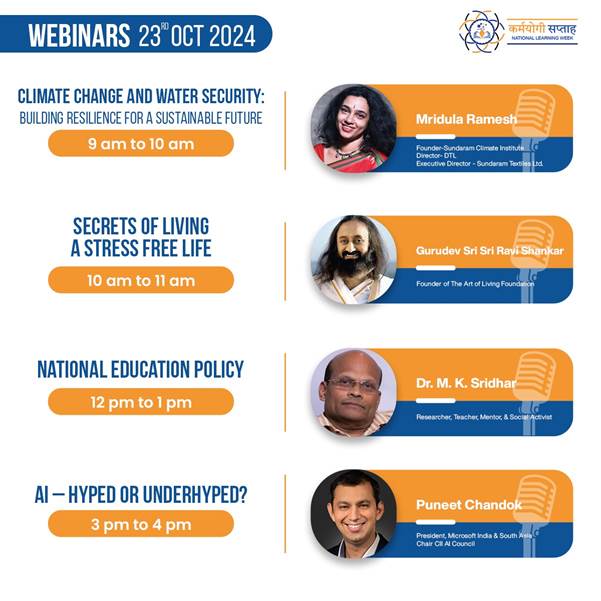
- 19 Oct 2024
In News:
Prime Minister Narendra Modi launched the ‘Karmayogi Saptah’ - National Learning Week on 19th October at Dr. Ambedkar International Centre, New Delhi.
Key Highlights:
- Context:
- The National Learning Week is a key event in the ongoing Mission Karmayogi initiative, aimed at building a civil service rooted in Indian ethos with a global outlook.
- Objective:
- To promote capacity building for civil servants through competency-linked learning.
- To align civil servants with national goals and foster a "One Government" approach.
- About National Learning Week (NLW):
- Largest learning event for civil servants, focused on individual and organizational growth.
- Encourages lifelong learning and continuous professional development.
- Provides fresh impetus to the Mission Karmayogi initiative, launched in September 2020, aimed at a future-ready, citizen-centric civil service.
- Learning Targets for Karmayogis:
- Each civil servant (Karmayogi) must complete at least 4 hours of competency-linked learning during the week.
- Learning opportunities include:
- Role-based modules on iGOT (Integrated Government Online Training platform).
- Webinars, public lectures, and policy masterclasses by prominent experts.
- Focus on improving skills for citizen-centric service delivery.
- Workshops & Seminars:
- Ministries, departments, and organizations organized domain-specific workshops and seminars.
- The goal is to enhance skills and knowledge, fostering better public service delivery.
- Outcomes:
- Strengthened alignment of civil servants with national priorities and goals.
- Enhanced individual competencies to better address citizen needs.
- A stronger commitment to continuous learning within the civil service.
Justice Sanjiv Khanna Appointed as Next Chief Justice of India
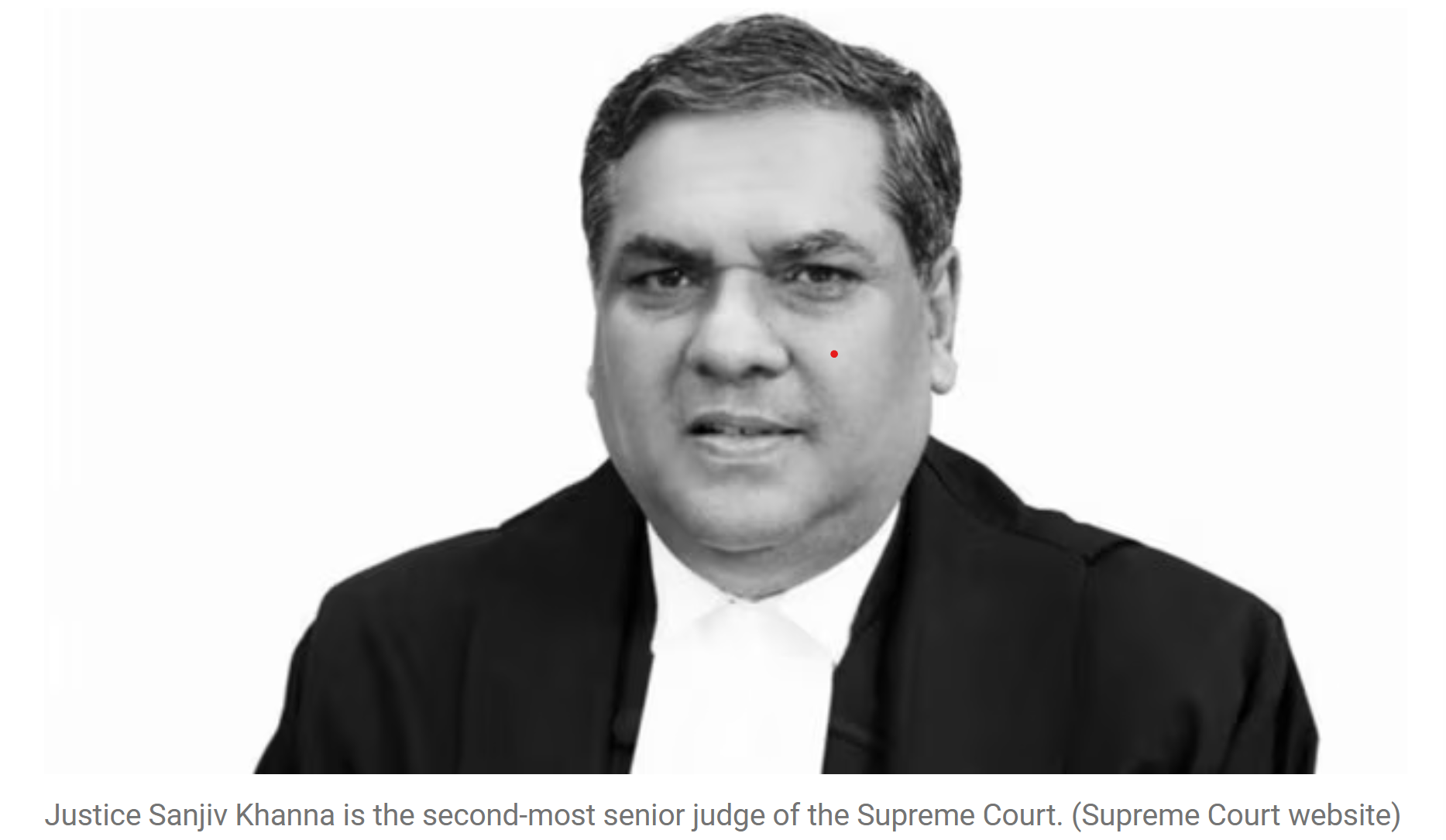
- 18 Oct 2024
In News:
Justice Sanjiv Khanna Appointed as Next Chief Justice of India, Will Assume Office on November 11
- Appointment:
- Justice Sanjiv Khanna has been appointed as the 51st Chief Justice of India by President Droupadi Murmu.
- He is set to take office on November 11, 2024, succeeding Chief Justice D.Y. Chandrachud, who is retiring on November 10, 2024.
- Tenure:
- Justice Khanna's tenure will be relatively short, lasting only six months, as he is scheduled to retire on March 13, 2025.
Career and Background
- Education and Early Career:
- Justice Khanna is a graduate of Delhi University’s Campus Law Centre.
- He enrolled as an advocate in 1983 and primarily practiced before the Delhi High Court.
- Prior to his elevation to the Delhi High Court in 2005, he served as the Senior Standing Counsel for the Income Tax Department and the standing counsel for civil matters for the Delhi government.
- Judicial Career:
- Supreme Court Appointment: Justice Khanna was appointed to the Supreme Court in January 2019, despite not having served as Chief Justice of a High Court. He was elevated over other senior judges from the Delhi High Court, such as Justices Rajendra Menon and Pradeep Nandrajog, whose names were initially recommended but not forwarded to the government.
- Key Contributions:
- Justice Khanna has been part of several significant rulings, including:
- February 2024: Part of the five-judge bench that struck down the Electoral Bond Scheme as unconstitutional.
- 2023: Contributed to upholding the abrogation of Article 370 of the Constitution.
- 2023: Authored a ruling granting the Supreme Court the power to directly grant divorce under Article 142 on the grounds of "irretrievable breakdown of marriage."
- Justice Khanna has been part of several significant rulings, including:
- Administrative Role:
- Justice Khanna currently serves as the Executive Chairman of the National Legal Services Authority (NALSA).
Process of Appointment of Chief Justice of India (CJI)
- Seniority Principle: The CJI is typically the senior-most judge of the Supreme Court.
- Memorandum of Procedure (MoP): The Law Ministry requests a recommendation from the outgoing CJI for his successor.
- Presidential Appointment: After receiving the recommendation, the President of India formally appoints the new CJI.
- Tenure and Retirement: The CJI serves until the age of 65. Upon retirement, the senior-most judge becomes the next CJI.
- Merit and Integrity Considerations: In addition to seniority, merit and integrity play crucial roles in the selection process for the CJI.
Strengthening Teaching-Learning and Results for States (STARS)
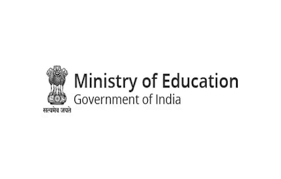
- 18 Oct 2024
In News:
The Department of School Education & Literacy (DoSE&L), Ministry of Education, hosted a two-day Strengthening Teaching-Learning and Results for States (STARS) knowledge sharing workshop in Bhopal, Madhya Pradesh.
- Event Overview:
- Two-day workshop hosted by the Department of School Education & Literacy (DoSE&L), Ministry of Education.
- Focus areas: School-to-Work Transition and Strengthening the Assessment System.
- Key Objectives:
- To enhance school-to-work transitions.
- To discuss strengthening educational assessment systems.
- Align education with future workforce needs as per the National Education Policy 2020.
Day 1: School-to-Work Transition
Panel Discussions:
- Policy Frameworks:
- Role of National Education Policy 2020, National Curriculum Framework (NCF), and National Credit Framework (NCrF) in school-to-work transitions.
- Focus on integrating skill education into school curricula, fostering multidisciplinary learning, and continuous evaluation to meet industry standards.
- Emphasis on internships, apprenticeships, and flexible learning pathways.
- Curriculum Integration:
- Need for integrated efforts across departments and aligning curriculum with industry demands.
- Focus on strengthening 21st-century skills in CBSE schools.
- Career Counselling and Psychometric Analysis:
- Focus on using psychometric assessments for career counselling and preparing students for future work environments.
- Work-Based Learning:
- Discussed partnerships with industry for work-based learning.
- Effective collaborations between schools and industry for internships, placements, and best practices.
Day 2: Strengthening Assessment System
- Psychometric Analysis & Career Counselling:
- Smt. Idzes Angmo Kundan (Principal Secretary, Maharashtra) presented the 3 P approach to career choices: Personal Interest, Parental Approach, and Possible Opportunities.
- Enhancing Student Outcomes:
- Discussed improving student outcomes by strengthening assessment systems.
- Shared innovations in educational assessments.
- Highlighted innovative assessment practices for future education.
- VSK Implementation (Chhattisgarh):
- Discussed VSK modes, data analysis, and strategies for integrating assessment outcomes with learning objectives.
- Strengthening Assessment Cells:
- Advocated for the establishment of assessment cells.
- Discussed best practices and challenges in strengthening assessment cells across states.
PM GatiShakti National Master Plan
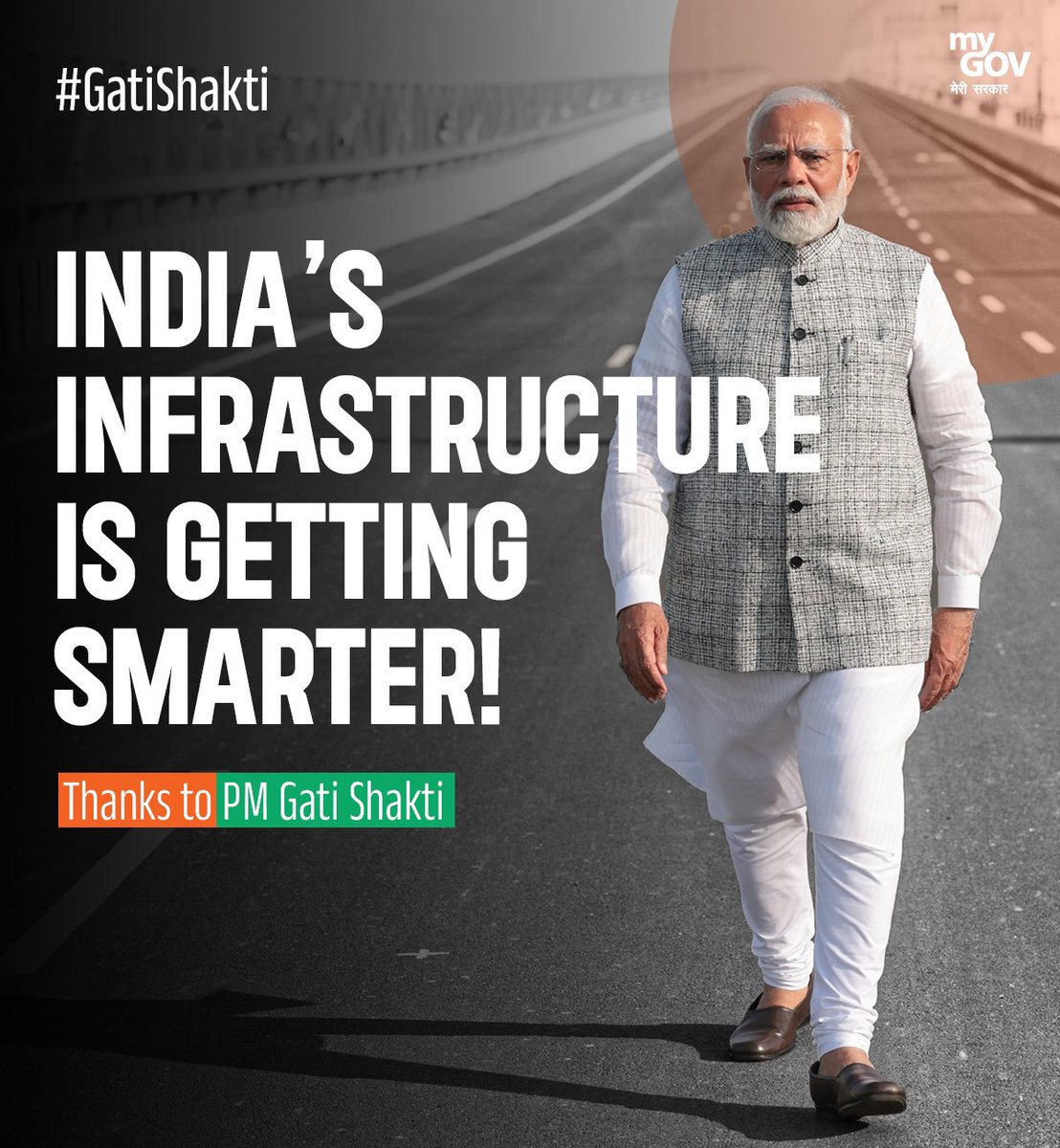
- 16 Oct 2024
In News:
- The Prime Minister commended the completion of three years of the PM GatiShakti National Master Plan, calling it a transformative initiative for India’s infrastructure development.
- Key Benefits: The plan enhances multimodal connectivity and improves efficiency across various sectors, contributing to logistics, job creation, and innovation.
Overview of PM GatiShakti National Master Plan
- Launch Date: October 2021
- Objective: A transformative initiative worth ?100 lakh crore aimed at revolutionizing India’s infrastructure over five years.
- Development Tool: Created as a Digital Master Planning tool by the Bhaskaracharya National Institute for Space Applications and Geoinformatics (BISAG-N).
- GIS Platform: Utilizes a dynamic Geographic Information System to integrate action plans from various ministries into a comprehensive database.
- Goals: Accelerate project completion, reduce timelines, and enhance India’s global competitiveness by addressing inter-ministerial challenges.
Key Features
- Digital Integration: A digital platform coordinating the efforts of 16 ministries for seamless infrastructure planning.
- Multi-Sector Collaboration: Incorporates initiatives from major programs like Bharatmala and Sagarmala.
- Economic Zones Development: Focuses on key areas such as textile clusters and pharmaceutical hubs to boost productivity.
- Technology Utilization: Employs advanced spatial planning tools and ISRO satellite imagery for data-driven project management.
Core Sectors Driving the Plan
- The National Master Plan is centered around seven primary sectors that enhance economic growth and connectivity, supported by sectors like energy transmission and social infrastructure.
Six Pillars of PM GatiShakti
- Comprehensiveness: Integrates various initiatives through a centralized portal, ensuring efficient planning.
- Prioritisation: Allows ministries to prioritize projects based on national importance and resource allocation.
- Optimisation: Identifies infrastructure gaps and selects the most efficient transportation routes.
- Synchronisation: Ensures coordinated efforts across ministries to avoid delays.
- Analytical Capabilities: Offers extensive data layers for improved spatial planning and decision-making.
- Dynamic Monitoring: Uses satellite imagery for real-time project tracking and adjustments.
Achievements of PM GatiShakti
- District-Level Expansion: Extended to 27 aspirational districts, with plans for 750 in the near future.
- Technological Integration: Enhanced real-time infrastructure planning using geospatial tools.
- Global Outreach: The GatiShakti tool showcased to 30 countries and highlighted at international conferences.
- Social Sector Benefits: Identified areas for new healthcare facilities and improved planning in various districts.
- Rural and Urban Development: Implemented projects for irrigation and city logistics in multiple states.
- Employment Initiatives: Utilized for setting up training institutes near industrial clusters.
International Abhidhamma Divas
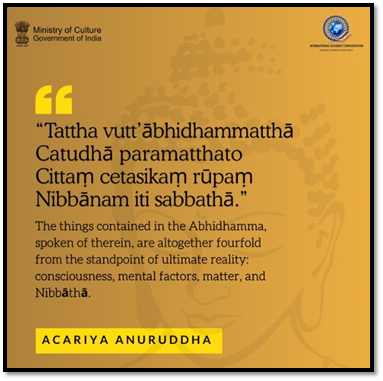
- 16 Oct 2024
In News:
Recently, International Abhidhamma Divas was celebrated at Vigyan Bhavan, New Delhi, with PM Narendra Modi.
Key Details:
- India's Spiritual Legacy: Birthplace of Buddhism; site of Gautam Buddha's enlightenment.
- Sacred Sites: Veneration of locations like Bodh Gaya, symbolizing Buddha's journey and teachings.
- Core Teachings: Abhidhamma as a key philosophical component emphasizing mental discipline and self-awareness.
International Abhidhamma Divas
- Global Observation: Celebrates the significance of Abhidhamma in ethical conduct and mindfulness.
- Cultural Connection: Highlights India's role in preserving Buddhism and bridging ancient wisdom with contemporary practices.
Historical Background and Significance
- Commemoration: Marks Buddha’s descent from T?vati?sa to Sankassiya (Sankisa Basantapur).
- Teaching Period: Buddha taught the Abhidhamma to deities for three months; linked to the end of the Rainy Retreat and the Pav?ra?? festival.
Teachings of Abhidhamma
- Systematic Analysis: Provides a detailed exploration of mind and matter, differing from Sutta Pi?aka.
- Specialized Vocabulary: Key terms include "citta" (consciousness), "cetasika" (mental factors), "r?pa" (materiality), and "nibb?na" (liberation).
- Textual Framework: Six core books of Abhidhamma Piñaka cover moral states, aggregates, and causal relationships.
- Key Treatise: The Paññh?na offers in-depth causal analysis, essential for practitioners’ understanding.
Modern Observance and Celebrations
- Significance of Pali: Recognition of Pali as a classical language; promoting India's Buddhist heritage.
- Participants: Gathering of ambassadors, monks, scholars from 14 countries; emphasizes Abhidhamma's relevance today.
- Program Highlights: Dhamma discourse, academic sessions on Abhidhamma’s significance, exhibitions on Pali's evolution and Buddha's teachings.
Classical Status of Pali Language
- Pali's Role: Sacred language for delivering Buddha's teachings; recognized as a Classical Language by India.
- Buddhist Canon: Major texts include the Tipitaka (Vinaya, Sutta, Abhidhamma Pitaka) and commentarial traditions.
- Literary Heritage: Jataka Kathas reflect shared moral values; status enhances Pali studies in education and research.
Significance
- Significance of Celebration: Abhidhamma Divas underscores efforts to preserve and promote Buddhism’s legacy.
- Revitalization of Buddhism: Fosters global engagement and appreciation for Buddha’s teachings, reaffirming India's role in Buddhist studies.
Colombo Security Conclave
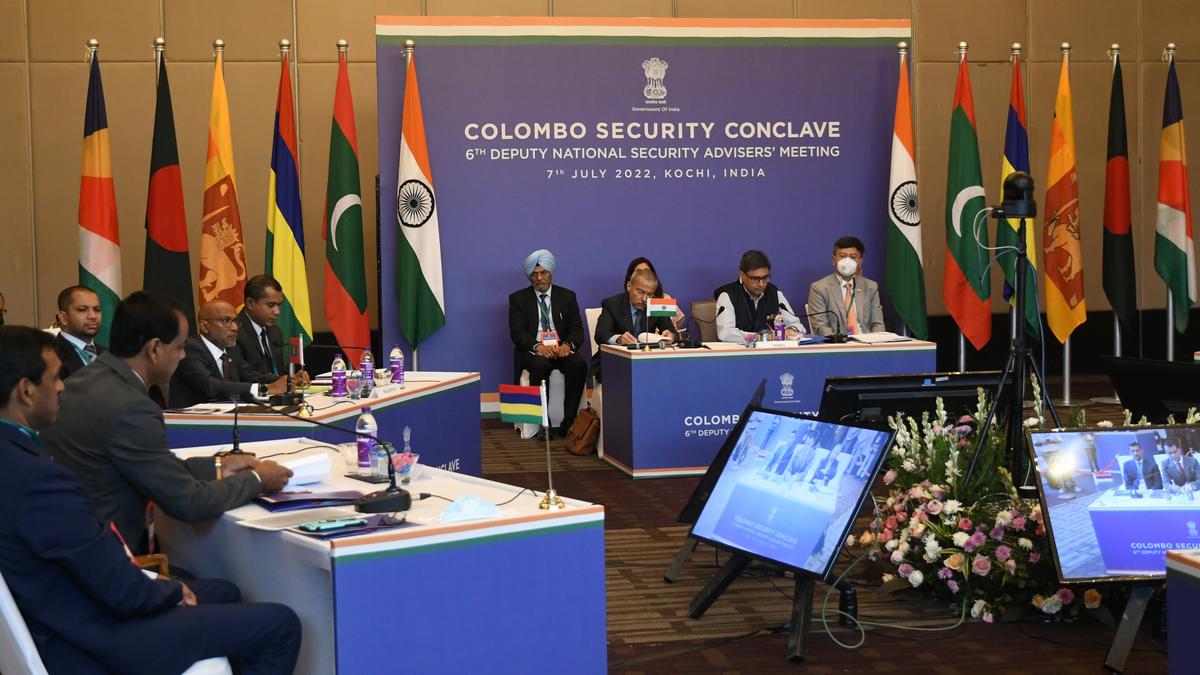
- 11 Oct 2024
In News:
The Colombo Security Conclave (CSC) reached a milestone on August 30, 2024 with India, Sri Lanka, the Maldives and Mauritius signing a Charter and a memorandum of understanding, for the establishment of the CSC secretariat.
Key Facts:
Background of CSC:
- Originally called the NSA Trilateral on Maritime Security, the CSC was established in 2011 among India, Sri Lanka, and the Maldives. The initiative aimed to bolster maritime security in the Indian Ocean Region.
Membership:
- The founding members include India, Sri Lanka, and the Maldives. Mauritius joined in 2022, and Bangladesh became a member in 2024. Seychelles participates as an observer state.
Goals of CSC:
The CSC aims to foster cooperation in five main areas:
- Maritime safety and security
- Counterterrorism and prevention of radicalization
- Combating trafficking and transnational organized crime
- Cybersecurity and safeguarding critical infrastructure
- Humanitarian assistance and disaster relief
Defence Exercises:
- In November 2021, India, Sri Lanka, and the Maldives held Exercise Dosti XV in the Maldives, marking their first joint military exercise in the Arabian Sea under the CSC framework.
Unexpected Transformation of the Sahara Desert
- 10 Oct 2024
In News:
The Sahara Desert, one of the driest regions globally, is undergoing a surprising transformation due to an extratropical cyclone that impacted northwestern Africa on September 7-8, leading to patches of green across Morocco, Algeria, Tunisia, and Libya.
Key Details:
- Satellite Observations: NASA's satellite images reveal extensive greenery sprouting in areas typically known for drought conditions, as reported by NASA’s Earth Observatory.
- Flourishing Vegetation: Climate researcher Sylwia Trzaska noted that shrubs and trees are thriving in low-lying regions like riverbeds. Peter de Menocal, president of the Woods Hole Oceanographic Institution, highlighted that plant life can quickly respond to significant rainfall, transforming dunes into vibrant landscapes.
- Historical Context: Research indicates that the Sahara was once a lush environment with lakes and vegetation between 11,000 and 5,000 years ago. Recent heavy rains have replenished normally dry lakes.
- Rainfall Dynamics: The unusual rainfall event is attributed to the northward shift of the Intertropical Convergence Zone (ITCZ), which has moved further north than usual, resulting in equatorial-like downpours in the Sahara. Some areas experienced over half a foot of rain, surpassing typical annual precipitation levels.
- Impact of Rain Patterns: While the rains primarily affected less populated regions, severe flooding has resulted in over 1,000 fatalities and impacted around four million people across 14 African nations, according to reports from the World Food Programme and Associated Press.
- Climate Change Factors: Experts suggest that the repositioning of the ITCZ may be connected to record-high ocean temperatures and climate change, potentially altering rainfall patterns across Africa.
- Future Projections: As global ocean temperatures stabilize, de Menocal predicts that the rain belt may revert to a more southerly position, potentially crossing the equator.
- Sahara Desert Facts:
o The Sahara is the world's largest hot desert, spanning approximately 4,800 km in length and 1,800 km in width.
o It covers about 31% of the African continent, extending across 11 North African nations, including Algeria, Egypt, Mali, Morocco, Western Sahara, Tunisia, Chad, Libya, Mauritania, Niger, and Sudan
National Maritime Heritage Complex (NMHC)
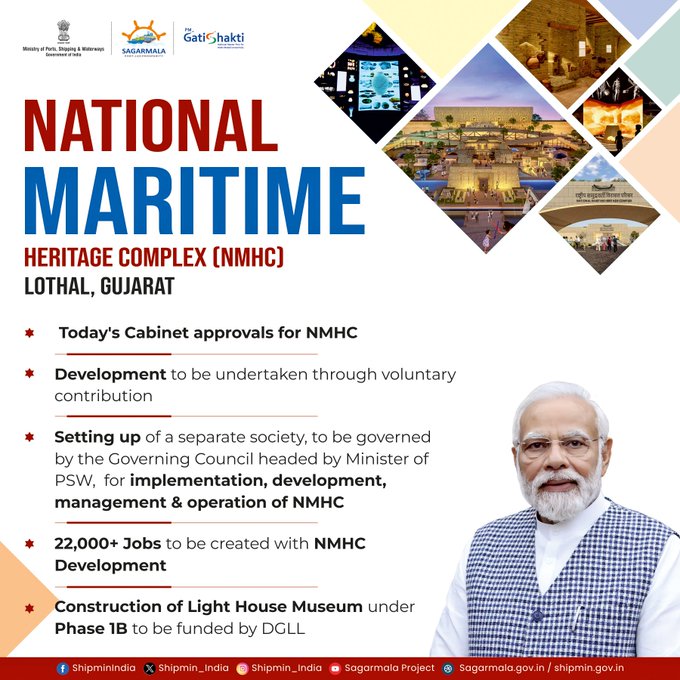
- 10 Oct 2024
In News:
The Union Cabinet has approved the development of NMHC in Lothal, Gujarat, under the Sagarmala programme.
- Purpose and Vision Aimed at showcasing India’s 4,500-year-old maritime heritage using an edutainment approach with modern technology.
Employment Generation
- Expected to create approximately 22,000 jobs: 15,000 direct and 7,000 indirect.
Project Phases
- Phase 1A
- Features a museum with 6 galleries, including:
- A large Indian Navy & Coast Guard gallery with external naval artifacts.
- Replica of Lothal township surrounded by an open aquatic gallery.
- A jetty walkway.
- Phase 1B
- Expansion includes:
- 8 additional galleries.
- The world's tallest Light House Museum.
- Bagicha complex with facilities for 1,500 cars, a food hall, and a medical center.
- Phase 2
- Development of Coastal States Pavilions by respective states and union territories.
- Hospitality zone featuring maritime-themed eco-resorts and museuotels.
- Recreation of ancient Lothal City and establishment of a Maritime Institute with hostel.
- Creation of four theme-based parks:
- Maritime & Naval Theme Park
- Climate Change Theme Park
- Monuments Park
- Adventure & Amusement Park
Governance and Management
- Governing Council
- Chaired by the Minister of Ports, Shipping & Waterways, overseeing project implementation and operation.
- Separate Society
- A dedicated society will manage future phases, governed under the Societies Registration Act, 1860.
Benefits and Funding
- Beneficiaries
- Local communities, tourists, researchers, government bodies, educational institutions, cultural organizations, conservation groups, and businesses.
- Funding
- Construction of the Light House Museum in Phase 1B will be financed by the Directorate General of Lighthouses and Lightships (DGLL).
Sagarmala Programme
- Objective
- A flagship initiative aiming to transform India’s maritime sector by enhancing logistics performance and fostering port-led development and coastal community upliftment.
- Background
- Approved in March 2015, the programme focuses on utilizing India’s extensive coastline and waterways for economic growth.
UK-Mauritius Treaty on Chagos Archipelago
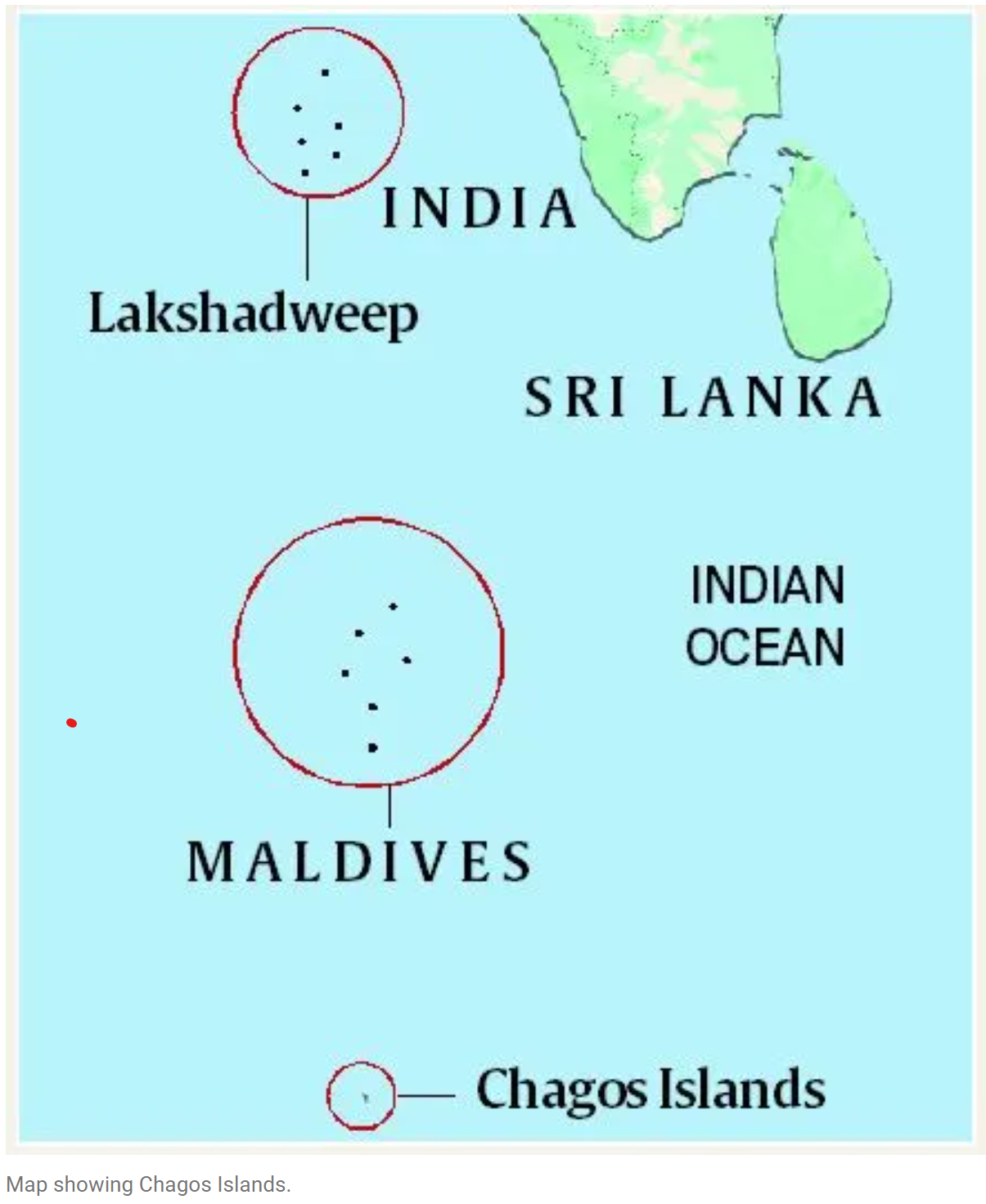
- 08 Oct 2024
In News:
The United Kingdom said it would cede sovereignty of the strategically important Chagos Islands to Mauritius, calling it a “historic political agreement”. The UK has long controlled Chagos and the Diego Garcia military base located there, jointly operating it with the United States.
Background of the Chagos Archipelago
Historical Context
- The Chagos archipelago consists of 58 islands located about 500 km south of the Maldives.
- Initially uninhabited, the islands were populated in the late 18th century through the importation of slave labor.
- The islands were ceded to Britain from France in 1814, and in 1965, the UK established the British Indian Ocean Territory (BIOT), which includes Chagos.
Controversy Over Sovereignty
- Mauritius, a former British colony, claims that the detachment of Chagos from its territory during its independence in 1968 was illegal.
- The UK compensated Mauritius with a grant but retained control, establishing a military base on Diego Garcia.
Strategic Importance of Diego Garcia
Military Significance
- Diego Garcia has been a crucial U.S. military base since its operational status began in 1986.
- It played a key role in U.S. military operations during conflicts in the Gulf, Iraq, and Afghanistan.
- The base enables rapid response to crises and supports regional security, especially in light of U.S. interests in monitoring key trade routes like the Malacca Strait.
Geopolitical Implications
- The presence of the U.S. military in the Indian Ocean is vital for countering security threats, particularly regarding China's growing influence.
Recent Developments: The UK-Mauritius Agreement
Key Features of the Treaty
- On October 3, 2023, the UK agreed to cede sovereignty of the Chagos Islands to Mauritius, marking a significant political shift.
- The treaty allows Mauritius to resettle Chagossians (excluding Diego Garcia) and establishes a trust fund for their benefit.
- Despite this, the UK retains control over Diego Garcia for an initial period of 99 years.
Implications of the Agreement
- The resolution of the sovereignty issue may strengthen Western commitments to a stable and free Indo-Pacific region.
- If unresolved, tensions could push Mauritius toward seeking alliances with alternative powers like China.
India’s Position and Interests
Support for Mauritius
- India has historically supported Mauritius in its claims over Chagos, reflecting its stance against colonial legacies.
- In 2019, India voted in favor of Mauritius at the UN General Assembly regarding the Chagos dispute.
Strategic Partnerships
- With increasing Chinese assertiveness in the Indian Ocean, India has been strengthening its ties with Mauritius.
- Recent initiatives include the inauguration of an India-built airstrip and jetty in Agaléga, enhancing connectivity and support for Mauritius.
Conclusion
The UK-Mauritius treaty over the Chagos Archipelago marks a significant turning point in colonial legacies and geopolitical alliances in the Indian Ocean. For India, supporting Mauritius aligns with its broader strategic interests and enhances its influence in a region marked by competing global powers. As the dynamics evolve, India's role in fostering regional stability and partnerships will be crucial.
44th Session of Codex Committee on Nutrition and Foods for Special Dietary Uses
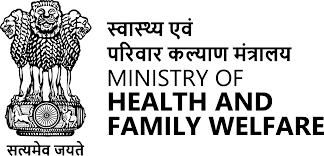
- 08 Oct 2024
In News:
India Participates in 44th Session of Codex Committee on Nutrition and Foods for Special Dietary Uses
Key Contributions:
- Nutrient Reference Values:
- Advocated for reference values for ages 6 to 36 months.
- Suggested combining NRV-R values by averaging those for 6-12 months and 12-36 months.
- This proposal was accepted by the committee.
- Probiotic Guidelines:
- Emphasized the need to update FAO/WHO probiotic guidelines, which are two decades old.
- Highlighted the lack of international harmonization in probiotic regulations affecting global trade.
- Committee agreed to revisit guidelines and requested FAO and WHO to conduct a literature review on probiotics.
- Discussion on Sweetness Assessment:
- Disagreed with the EU’s sensory testing proposal for carbohydrate sources in Follow-up Formula, citing lack of scientific validation.
- Supported by USA, Canada, and others; this led to the committee discontinuing the topic for now.
- Noted that ISO 5495 or other methods could be used in the absence of harmonized methods.
- Delegation:
- Included representatives from the Food Safety and Standards Authority of India, Ministry of Health and Family Welfare, and Ministry of Women and Child Development.
- Advocated for various food safety, consumer health, and trade-related issues.
- Outcome:
- India’s suggestions were officially incorporated into the final report, significantly influencing global food safety and nutrition standards.
- Additional Announcements:
- FAO/WHO plans for a Joint Statement on Healthy Diet Principles.
- Updates on reviewing benefits and risks of Alternative Animal Source Foods (A-ASFs).
- FAO introduced a new “Food and Diet” domain on its FAOSTAT database.
India’s Tripartite Agreement
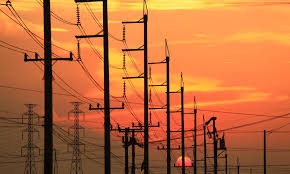
- 07 Oct 2024
In News:
Nepal, India, and Bangladesh have signed a tripartite agreement to facilitate cross-border electricity trade, enabling Nepal to export surplus electricity to Bangladesh via India.
Key Details of the Agreement
- Export Period: The agreement allows for electricity exports from June 15 to November 15 each year.
- Initial Export Volume: In the first phase, Nepal will export 40 MW of hydroelectricity to Bangladesh through Indian territory.
- Electricity Rate: The fixed rate per unit of electricity is set at 6.4 cents.
- Projected Revenue: Nepal is expected to earn approximately $9.2 million annually from this trade.
This agreement aims to enhance regional cooperation in energy trade and support sustainable development in the participating countries.
Shanghai Cooperation Organisation (SCO)
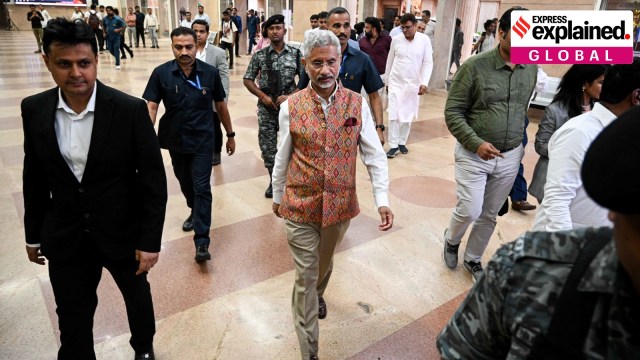
- 06 Oct 2024
In News:
- External Affairs Minister S. Jaishankar will attend the Shanghai Cooperation Organisation (SCO) Heads of Government meeting in Islamabad on October 15-16, 2023.
- This marks the first visit by an Indian External Affairs Minister to Pakistan since Sushma Swaraj in 2015.
Context of the Visit:
- The visit is primarily for the SCO meeting, reflecting India's focus on regional cooperation mechanisms.
- No bilateral meetings have been scheduled as of now, although Jaishankar's presence is based on "reciprocity" following Pakistan's participation in an earlier SCO meeting in India.
SCO Overview:
- Established on June 15, 2001, in Shanghai; evolved from the "Shanghai Five" formed in 1996.
- Original members included China, Russia, Kazakhstan, Kyrgyzstan, Tajikistan, and later Uzbekistan.
- Current members: India, Pakistan, Iran, and others, with Afghanistan and Mongolia holding Observer Status.
Significance of the SCO:
- Focuses on security cooperation, primarily among Asian nations.
- Seen as an alternative to Western international frameworks, especially with heavyweights like Russia and China positioning against US influence.
- India's inclusion alongside Pakistan in 2017 reflects the geopolitical jostling between Russia and China.
Geopolitical Dynamics:
- While SCO promotes cooperation, underlying tensions remain, particularly between India and Pakistan, and India and China.
- The organization has limited tangible outcomes due to member states' rivalries and differing interests.
India's Objectives in SCO:
- Provides a platform for enhancing relations with Central Asian countries, addressing common security concerns.
- Involves participation in the Regional Anti-Terrorist Structure (RATS) to combat terrorism and drug trafficking.
India-Pakistan Relations:
- Jaishankar's visit is seen in light of ongoing tensions; India shares difficult relations with both China and Pakistan.
- India canceled a summit under its presidency last year, opting for a virtual format instead.
Implications for Regional Politics:
- The visit comes shortly after the Jammu and Kashmir Assembly elections, with potential implications for India-Pakistan ties.
- Despite attending the SCO meeting, there is little expectation of progress in the India-Pakistan peace process.
- Recent statements from the Indian government criticize Pakistan for hosting wanted individuals, reflecting ongoing diplomatic tensions.
Strategic Importance:
- Participation in SCO allows India to engage with key regional players, including Russia, China, and Central Asian leaders.
- The meeting serves as preparation for India's participation in upcoming BRICS discussions, emphasizing the interconnectedness of these groupings.
Co-district Initiative
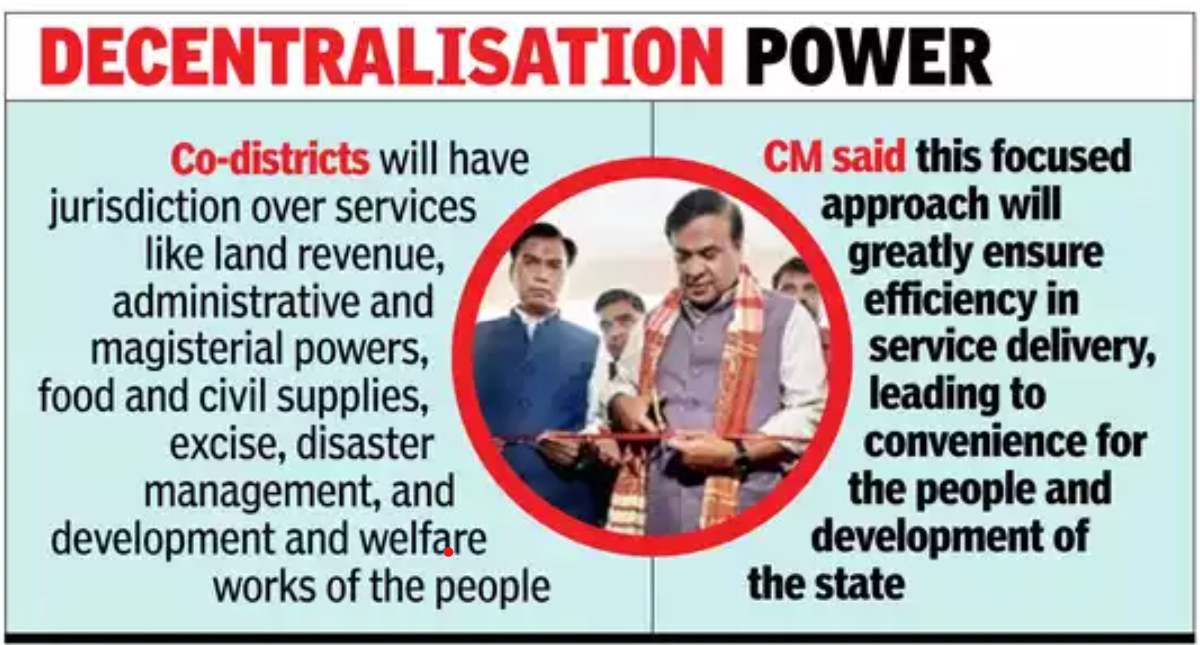
- 05 Oct 2024
In News:
Assam has launched an innovative administrative initiative by inaugurating 21 'co-districts' as part of its Phase 1 rollout, which began on Friday and will extend into Saturday, ultimately introducing a total of 39 co-districts. This new structure replaces the previous system of 24 civil sub-divisions, aiming to bring governance closer to the citizens.
About the Co-District Initiative
- Structure: Co-districts serve as smaller administrative units within the larger district framework, each headed by an Assistant District Commissioner.
- Objective: This unique initiative, the first of its kind in India, seeks to enhance accessibility to governance and address administrative challenges faced by district administrations.
- Scope: The government plans to establish co-district offices in all 126 assembly constituencies in Assam.
Functions and Powers
The co-districts will handle a variety of important functions, including:
- Land Revenue Matters: Managing land-related issues and revenue collection.
- Development and Welfare Work: Overseeing development projects and welfare programs.
- Excise and Disaster Management: Addressing excise-related matters and coordinating disaster response efforts.
- Administrative Control: Co-districts will have authority over all departmental activities within their jurisdiction.
- Magisterial Powers: Commissioners will be empowered to issue permissions for events and manage other administrative tasks.
- Routine Administrative Tasks: Responsibilities include issuing ration cards, caste certificates, and land sale permissions.
India-U.S. MoU on Critical Minerals Supply Chains
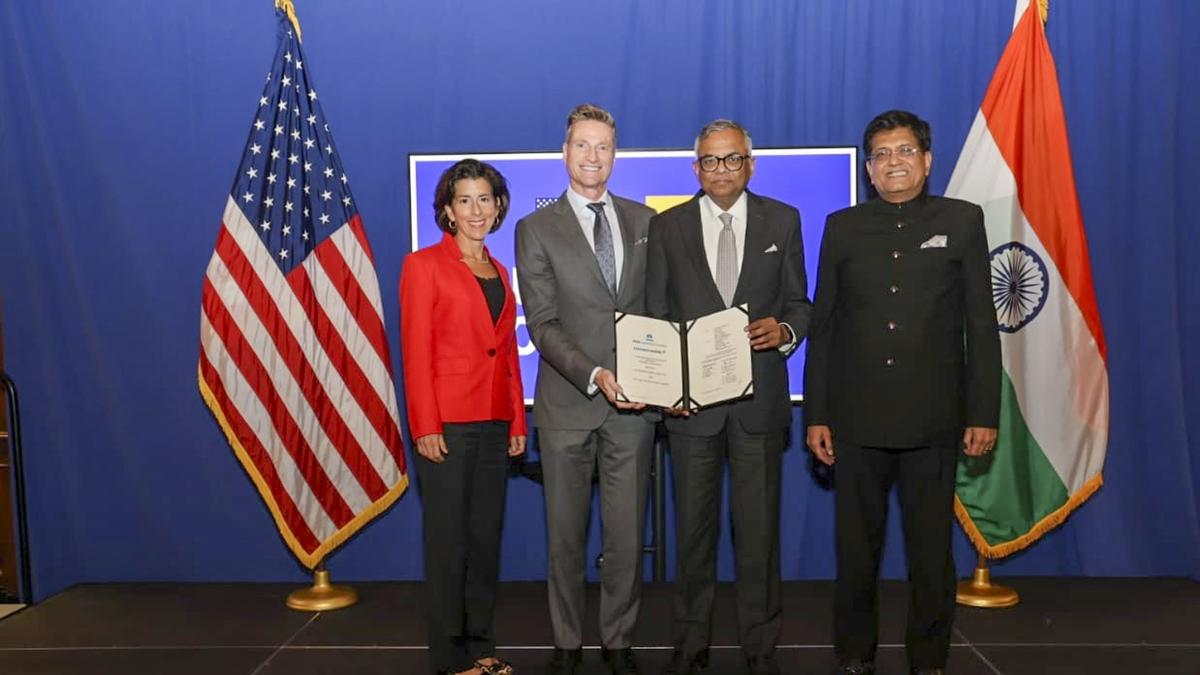
- 05 Oct 2024
In News:
- The sixth Commercial Dialogue took place in Washington on October 4, 2024, led by Indian Union Minister of Commerce Piyush Goyal and U.S. Commerce Secretary Gina Raimondo.
- MoU Signing: A day prior, the leaders signed a memorandum of understanding (MoU) aimed at expanding and diversifying critical minerals supply chains to enhance resilience.
- Focus Areas:
- Identification of equipment, services, policies, and best practices for the development of U.S. and Indian critical minerals, covering:
- Exploration
- Extraction
- Processing and refining
- Recycling and recovery
- Identification of equipment, services, policies, and best practices for the development of U.S. and Indian critical minerals, covering:
- Context: This agreement follows China's export restrictions on gallium and germanium, critical for the semiconductor industry, and its ban on technology related to rare earth magnets and critical materials extraction.
- Strategic Goals:
- Promote open supply chains, technology development, and investment flows for green energy.
- Explore collaboration with other mineral-rich countries, particularly in Africa and South America.
- Progress on Semiconductor Supply Chains:
- Continued efforts to establish resilient semiconductor supply chains since the previous MoU.
- Completion of a "readiness assessment" by the U.S. Semiconductor Industry Association and India Electronics Semiconductor Association.
- Commitment to foster investments, joint ventures, and technology partnerships.
- Innovation Handshake: Success of roundtables in San Francisco and New Delhi aimed at enhancing innovation ecosystems and startup collaboration.
- Strategic Clean Energy Partnership: Discussions from the EIN Roundtable in March 2024 informed the U.S.-India Strategic Clean Energy Partnership meeting.
- IPEF Supply Chain Agreement: Significant progress noted in the IPEF ministerial meeting, focusing on semiconductors, chemicals, and critical minerals, particularly batteries and healthcare products.
- Future Collaborations:
- Focus on expanding U.S. Department of Commerce presence in India with approximately 70 Foreign Commercial Service staff.
- Plans for a U.S. trade mission to India in March 2025 aimed at supporting U.S. SMEs owned by underserved communities.
- Domestic Solar Manufacturing Protection: India reinstated the Approved List of Models and Manufacturers (ALMM) order to protect local solar PV module production against cheaper imports from China.
- Economic Context:
- The Economic Survey 2023-24 highlights China's expanding manufacturing trade surplus and its restrictive actions affecting India's access to solar equipment.
- India’s Production Linked Incentive (PLI) schemes have invested over $4.5 billion to bolster clean energy manufacturing but require additional policies to safeguard these investments.
USCIRF Report on India: Key Highlights
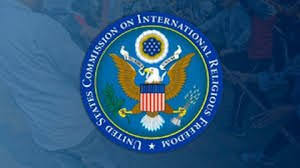
- 04 Oct 2024
In News:
The United States Commission on International Religious Freedom (USCIRF), a Washington DC-based bipartisan U.S. federal government agency, has released a country update on India, flagging “collapsing religious freedom conditions”.
- Agency Overview:
- The United States Commission on International Religious Freedom (USCIRF) is an independent, bipartisan U.S. federal commission established under the 1998 International Religious Freedom Act (IRFA).
- Its primary functions include reviewing global religious freedom violations, providing policy recommendations to U.S. leaders, and publishing annual reports.
- Current Concerns:
- USCIRF's latest report indicates a “collapse” in religious freedom conditions in India, particularly worsening throughout 2024, especially around national elections.
- Legal and Policy Changes:
- Strengthening of discriminatory legislation, including:
- State-level anti-conversion and anti-terrorism laws.
- Implementation rules for the 2019 Citizenship (Amendment) Act (CAA).
- Passage of a State-level Uniform Civil Code (UCC) Bill in Uttarakhand.
- Strengthening of discriminatory legislation, including:
- Violations and Incidents:
- Expropriation of Places of Worship:
- Authorities have facilitated the construction of Hindu temples on former mosque sites.
- Increased attacks on religious minorities, particularly following the consecration of the Ayodhya temple in January 2024.
- Targeting of Religious Minorities:
- Arrests of Christians accused of forced conversions under anti-conversion laws.
- Anti-cow slaughter laws exploited by vigilante groups to target Muslims, Christians, and Dalits, often with little to no legal repercussions for perpetrators.
- Expropriation of Places of Worship:
- Recommendations:
- USCIRF urges the U.S. State Department to designate India as a “Country of Particular Concern” due to severe violations of religious freedom.
About USCIRF
- Composition: Comprised of nine commissioners appointed by the U.S. President or Congressional leaders, supported by non-partisan staff.
- Objective: To monitor and recommend actions on religious freedom violations aligned with international human rights standards.
National Mission on Edible Oils – Oilseeds (NMEO-Oilseeds)

- 04 Oct 2024
In News:
Cabinet Approves National Mission on Edible Oils – Oilseeds (NMEO-Oilseeds) (2024-25 to 2030-31).
Objective:
- Achieve self-reliance in edible oil production in seven years.
Financial Outlay:
- ?10,103 crore for the mission period.
Key Goals:
- Increase primary oilseed production from 39 million tonnes (2022-23) to 69.7 million tonnes by 2030-31.
- Boost domestic edible oil production to 25.45 million tonnes, meeting 72% of projected requirements.
Focus Areas:
- Enhance production of key oilseed crops: Rapeseed-Mustard, Groundnut, Soybean, Sunflower, Sesamum.
- Improve extraction efficiency from secondary sources (e.g., Cottonseed, Rice Bran).
Strategies:
- Promote high-yielding, high oil content seed varieties.
- Extend cultivation to rice fallow areas and encourage intercropping.
- Use advanced technologies like genome editing for seed development.
SATHI Portal:
- Launch of an online 5-year rolling seed plan for timely seed availability.
- Coordination with cooperatives, Farmer Producer Organizations (FPOs), and seed corporations.
Infrastructure Development:
- Establish 65 new seed hubs and 50 seed storage units.
- Develop over 600 Value Chain Clusters across 347 districts, covering over 1 million hectares annually.
Support for Farmers:
- Access to high-quality seeds, training on Good Agricultural Practices (GAP), and pest management advisory.
Environmental Benefits:
- Promote low water usage, improve soil health, and utilize crop fallow areas.
Background Context:
- India relies on imports for 57% of its edible oil demand.
- Previous initiatives include the National Mission on Edible Oils – Oil Palm (NMEO-OP) and significant increases in Minimum Support Price (MSP) for oilseeds.
- Imposition of 20% import duty on edible oils to protect local producers.
The NMEO-Oilseeds mission aims to enhance domestic oilseed production, reduce import dependency, and improve farmers' incomes while contributing to environmental sustainability.
Modified PKC-ERCP project
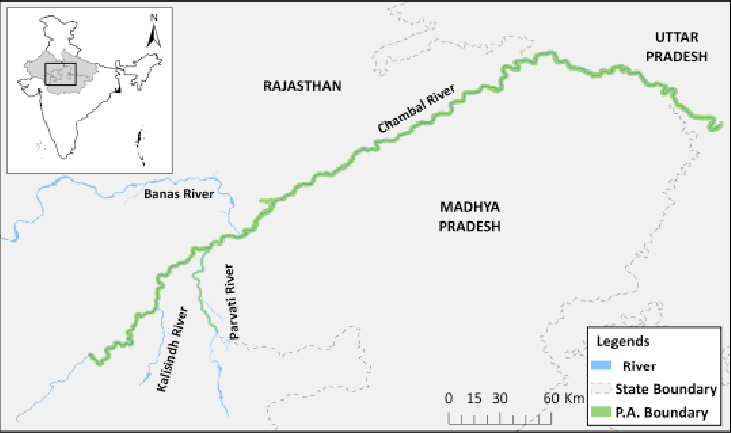
- 03 Oct 2024
In News:
Madhya Pradesh and Rajasthan governments signed an agreement for the implementation of the Rs 72,000 crore Parbati-Kalisindh-Chambal river linking project.
Modified PKC-ERCP Project Overview
- Signatories: Rajasthan, Madhya Pradesh, and the Union Ministry of Jal Shakti signed a MoU for implementation.
- Project Type: Inter-state river linking initiative.
- Integration: Combines the long-standing Parbati-Kalisindh-Chambal (PKC) project with the Eastern Rajasthan Canal Project (ERCP) under India's National Perspective Plan for interlinking rivers.
Objectives and Benefits
- Water Supply: Aims to provide drinking and industrial water to 13 districts in eastern Rajasthan and the Malwa and Chambal regions of Madhya Pradesh.
- Irrigation: Expected to irrigate approximately 5.6 lakh hectares across both states.
- Groundwater Management: Focus on improving groundwater levels and enhancing socio-economic conditions in rural Rajasthan.
Project Components
- Detailed Project Report (DPR): Currently under preparation, will outline water sharing, cost distribution, and implementation strategies.
- Historical Context:
- PKC Project: Proposed in 1980 as part of a national plan, initially focused on diverting water from Kalisindh and Newaj rivers to Chambal.
- ERCP: Proposed by Rajasthan in 2019 to optimize water resources by redistributing surplus monsoon water from various sub-basins to deficit areas.
Geographic Focus
- Beneficiary Districts in Rajasthan: Includes Alwar, Bharatpur, Dholpur, Karauli, and others.
- River Systems Involved:
- Chambal River: Originates in Madhya Pradesh, flows through Rajasthan, and joins the Yamuna.
- Kalisindh and Parbati Rivers: Serve as sources for water diversion.
Implementation Challenges
- Dependable Yield Issues: The original project proposal was based on a 50% dependable yield, contrary to the 75% norm, which was unacceptable to Madhya Pradesh. This led to discussions and revisions.
- Task Force Recommendations: Integrated discussions led to the proposal of the Modified PKC-ERCP, addressing both states' concerns.
Significance of the Project
- National Perspective Plan (NPP): Part of a larger initiative to manage water resources effectively across India, aiming to address water scarcity and improve irrigation.
- Support for Industrial Development: Enhances water availability for the Delhi-Mumbai Industrial Corridor, fostering economic growth.
Colombo Security Conclave (CSC)
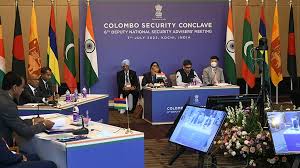
- 03 Sep 2024
In News:
The Colombo Security Conclave (CSC) recently marked a significant milestone with the signing of the Charter and the Memorandum of Understanding (MoU) for the establishment of its Secretariat in Colombo. This initiative aims to strengthen regional security collaboration among member states.
Key Features of the Colombo Security Conclave
- Member States: The CSC comprises five member countries:
- India
- Bangladesh
- Sri Lanka
- Maldives
- Mauritius
Additionally, Seychelles participates as an observer nation.
- Core Objectives: The primary goal of the CSC is to enhance regional security by addressing transnational threats and challenges that are common concerns for member states. This includes a collaborative approach to ensure stability and safety in the region.
Origin and Evolution
- The CSC originated as the Trilateral for Maritime Security Cooperation, established through trilateral meetings among National Security Advisors (NSAs) and Deputy NSAs from India, Maldives, and Sri Lanka starting in 2011.
- The initiative faced a setback after 2014 due to heightened tensions between India and the Maldives.
- It was revived and rebranded as the CSC in 2020, expanding its membership to include Mauritius and, more recently, Bangladesh.
Structure and Cooperation
- The conclave facilitates interactions among NSAs and Deputy NSAs of member countries, fostering dialogue and cooperation on security matters.
- Cooperation under the CSC is organized around five key pillars:
- Maritime Safety and Security
- Countering Terrorism and Radicalization
- Combating Trafficking and Transnational Organized Crime
- Cybersecurity and Protection of Critical Infrastructure
- Humanitarian Assistance and Disaster Relief
Permanent Secretariat
- The establishment of a permanent Secretariat in Colombo is expected to enhance coordination and streamline operations among member states, bolstering the efficacy of the CSC in addressing regional security issues.
Current State of Mental Healthcare in India

- 03 Sep 2024
Overview
India’s mental healthcare landscape is evolving, with increasing awareness and decreasing stigma around mental health issues. However, access to mental healthcare remains a significant challenge due to a shortage of professionals. Here are the key points:
Current State of Mental Healthcare in India
- Rising Demand: Shifts in societal attitudes have led to more individuals seeking mental health support. Awareness and willingness to access treatment have notably increased.
- Professional Shortage: Despite the rising demand, there are only 0.75 psychiatrists per one lakh population, far below the World Health Organization’s recommendation of three per lakh. As of the latest data, India has about 9,000 psychiatrists, while an estimated 36,000 are needed to meet the standard.
- Slow Workforce Growth: Approximately 1,000 psychiatrists enter the workforce annually, but with attrition and unemployment, it could take around 27 years to reach the WHO target without intervention.
- Comparative Analysis: India has one of the lowest psychiatrist-to-population ratios among BRICS nations, trailing only Ethiopia. However, it performs better than many South Asian countries.
Limitations of Current Data
- Outdated Survey: The data largely relies on the National Mental Health Survey (NMHS) conducted between 2015 and 2016, which is based on a limited sample size of around 40,000 people across 12 states.
- Narrow Focus: The NMHS primarily addressed specific mental illnesses and overlooked milder conditions, emotional issues, and vulnerable populations like prisoners and the homeless.
- Need for Updated Research: A second NMHS is scheduled for release next year, which may provide more comprehensive data and insights.
Improvements in Awareness and Attitudes
- Positive Attitudinal Shift: A study by the LiveLoveLaugh Foundation found significant improvements in how Indians perceive mental health. For instance, the percentage of people believing that individuals with mental illnesses can handle responsibilities rose from 32% in 2018 to 65% in 2021.
- Willingness to Seek Help: Over 90% of respondents in 2021 indicated they would seek treatment for themselves or support others in doing so, a substantial increase from 54% in 2018.
- Increased Awareness: Awareness of mental health issues has grown, with 96% of respondents in 2021 recognizing mental health compared to 87% in 2018.
Conclusion
While India is making strides in reducing stigma and increasing awareness around mental health, the critical shortage of mental health professionals poses a significant barrier to accessing timely care. Addressing this issue requires targeted policy interventions and incentives to boost the supply of mental health professionals and improve the overall infrastructure for mental healthcare in the country.
Supreme Court of India
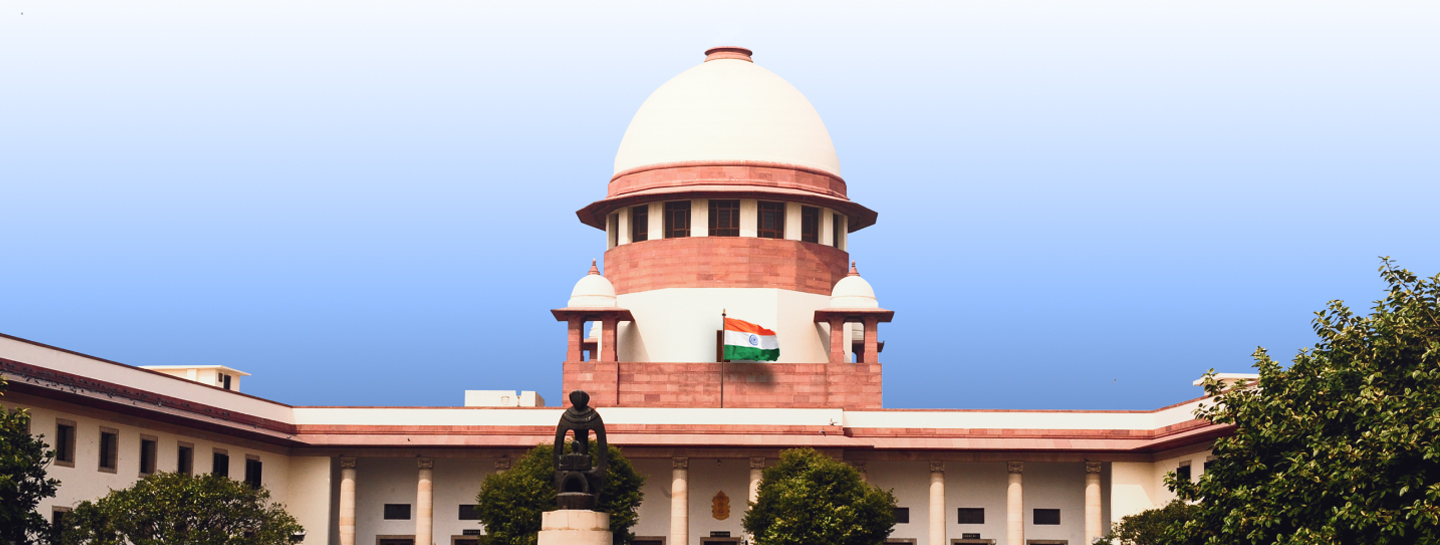
- 02 Sep 2024
In News:
On August 31, 2024, Prime Minister Narendra Modi inaugurated the National Conference of District Judiciary at Bharat Mandapam, New Delhi. This event marked the 75th anniversary of the Supreme Court of India, highlighted by the unveiling of a commemorative stamp and coin.
Supreme Court of India: History and Key Insights
The Origins of the Judiciary
- The concept of law, or Dharma, in ancient India was significantly influenced by the Vedas, which outlined rules of conduct and rituals in the Dharma Sutras. These texts addressed the duties of individuals and the rights of kings, forming the foundation of Hindu Law. The earliest systematic examination of jurisprudence can be found in Kautilya's Artha Sastra (circa 300 B.C.), particularly its third chapter, which discusses legal transactions and disputes.
Establishment of the Supreme Court
- The Regulating Act of 1773, enacted by the British Parliament, initiated the establishment of the Supreme Court of Judicature at Calcutta, with its Letters of Patent issued on March 26, 1774. This court had the authority to hear all complaints and lawsuits involving His Majesty’s subjects in Bengal, Bihar, and Orissa. Additional Supreme Courts were later established in Madras (1800) and Bombay (1823).
- The Indian High Courts Act of 1861 replaced these Supreme Courts with High Courts in various provinces, which became the highest judicial authorities until the Federal Court of India was created under the Government of India Act 1935. After India gained independence in 1947, the Supreme Court of India was formally established on January 26, 1950, with its inaugural session held on January 28, 1950.
- The Supreme Court's rulings are binding across India, and it possesses the power of judicial review to ensure that legislative and executive actions align with constitutional provisions and fundamental rights.
Structure and Functioning
- Initially, the Supreme Court operated for only a few hours each day and convened for 28 days a year. Today, it functions extensively, meeting approximately 190 days annually. The court was temporarily housed in the Parliament House before moving to its current location on Tilak Marg, New Delhi, in 1958.
- The court's architecture symbolizes justice, featuring a prominent dome and spacious corridors. It began with a Chief Justice and seven judges, with Parliament later increasing this number as the workload grew. Currently, the Supreme Court includes a Chief Justice and 30 judges.
Appointment and Qualifications of Judges
- Judges are appointed by the President of India, based on recommendations from a committee of senior judges (Collegium System). A candidate must be a citizen of India and have served as a High Court judge for at least five years or as an advocate for ten years. The age of retirement for judges is 65 years.
Judicial Independence and Removal
- Judicial independence is constitutionally protected. A Supreme Court judge can only be removed by the President on grounds of proven misbehavior or incapacity, following a resolution supported by a two-thirds majority in both Houses of Parliament.
Judicial Salaries and Provisions
- Judges’ salaries and pensions are defined by the Supreme Court Judges (Salaries and Conditions of Service) Act, 1958, and are charged to the Consolidated Fund of India.
Acting Chief Justice
- In the absence of the Chief Justice, the President appoints another judge as the Acting Chief Justice, as stipulated in Article 126.
Post-Retirement Opportunities
- While retired judges cannot practice law in India, they often serve in governmental roles, such as leading commissions. There have been calls for a "cool-off" period before such appointments.
Ad Hoc Judges
- Ad hoc judges may be appointed when necessary, and must meet the qualifications for Supreme Court judges. Retired judges can also be called back to serve temporarily.
Courts of Record
- Both the Supreme Court and High Courts are classified as courts of record, with the authority to punish for contempt as per Article 129.
Seat of the Supreme Court
- The Supreme Court is based in Delhi but can convene anywhere in India, with such decisions made by the Chief Justice in consultation with the President.
India's Biotech Revolution
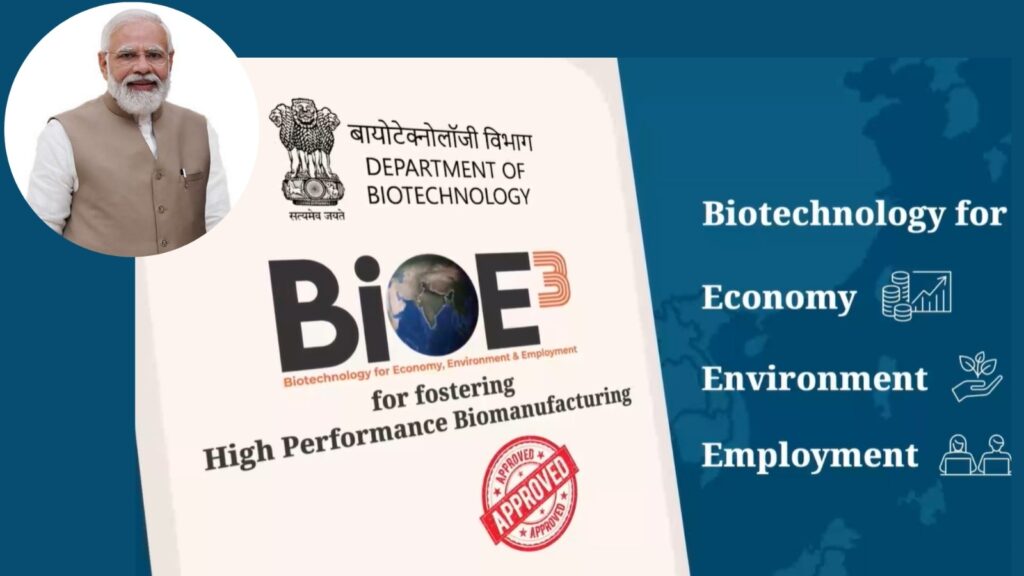
- 01 Sep 2024
In News:
The Indian Cabinet has recently approved the BioE3 (Biotechnology for Economy, Environment, and Employment) proposal, a significant move to advance the country’s biotechnology sector.
Scheduled to take effect on April 1, 2025, the BioE3 policy aims to capitalize on India's biotechnology potential by focusing on six key areas: bio-based chemicals, functional foods, precision biotherapeutics, climate-resilient agriculture, carbon capture, and marine/space research.
Current Status of India’s Biotechnology Sector
India ranks among the top 12 biotechnology destinations globally and is the third-largest in the Asia-Pacific region. As of 2024, India's Bioeconomy is valued at an estimated USD 130 billion. The sector is integral to India’s goal of becoming a USD 5 trillion economy by 2024, with biotechnology contributing about 3% to the global market share.
Biotechnology Categories in India:
- Biopharmaceuticals: India is a major supplier of low-cost drugs and vaccines, leading in biosimilars with the highest number of approvals.
- Bio-Agriculture: India dedicates approximately 55% of its land to agriculture, holding the fifth-largest area of organic agricultural land worldwide. The sector's contribution to the Bioeconomy is expected to grow from USD 10.5 billion to USD 20 billion by 2025.
- Bio-Industrial: Biotechnology is enhancing industrial processes, manufacturing, and waste disposal.
- Bio IT & BioServices: India excels in contract manufacturing, research, and clinical trials, hosting the highest number of US FDA-approved plants outside the US.
Government Initiatives:
- 100% foreign direct investment (FDI) is permitted in greenfield pharma and medical devices.
- The National Biotechnology Development Strategy 2021-25 aims to make India a global leader in biotechnology, targeting a USD 150 billion Bioeconomy by 2025.
- The Department of Biotechnology has established 51 Biotech-KISAN hubs to connect farmers with scientific advancements.
- The Union Budget 2023-24 includes INR 10,000 crore for 500 ‘waste to wealth’ plants under the GOBARdhan scheme.
- The GenomeIndia Project focuses on sequencing and analyzing the Indian population’s genomes to aid public health.
Challenges and Recommendations
Challenges:
- Regulatory Hurdles: The complex approval process for GMOs and overlapping regulatory bodies slow down progress.
- Funding Issues: Limited funding and high risks deter investment. The biotechnology sector receives only 0.05% of India's GDP from the Central Government.
- Infrastructure Gaps: Inadequate research facilities and cold chain infrastructure hamper progress.
- IP Concerns: Intellectual property protection remains weak, affecting innovation.
- Global Competition: Indian firms face stiff competition from established global players.
- Talent Shortages: A brain drain and skills mismatch impede growth.
- Ethical Dilemmas: Ethical issues related to GMOs and gene editing pose challenges.
Recommendations:
- Regulatory Streamlining: Establish a unified Biotechnology Regulatory Authority and adopt a risk-based assessment approach.
- Innovative Funding: Create a Biotechnology Investment Fund with public-private partnerships.
- Talent Development: Launch skill development programs and integrate biotech training into various disciplines.
- Infrastructure Investment: Develop shared high-end research facilities and upgrade cold chain infrastructure.
- IP Strengthening: Enhance the IPR regime and establish a Biotech Patent Pool.
- Leverage Make in India: Expand the Production Linked Incentive (PLI) scheme to cover more biotech products and establish specialized manufacturing corridors.
AVGC: The Future of Media & Entertainment Industry
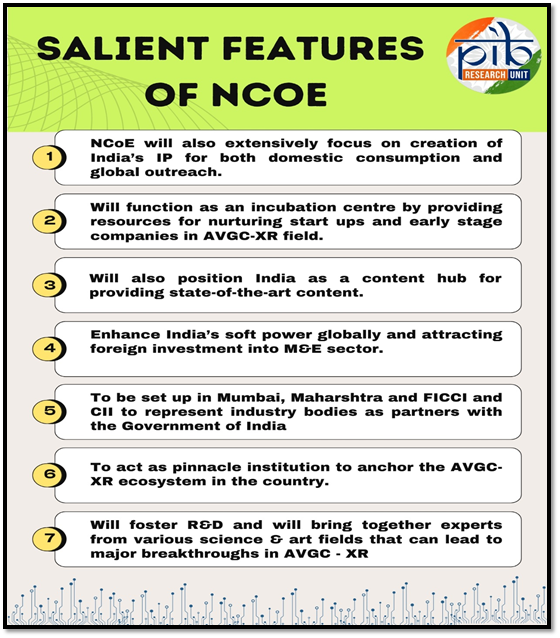
- 30 Sep 2024
Introduction
- The AVGC (Animation, Visual Effects, Gaming, Comics) sector is set to be the future of the media and entertainment industry.
- According to the FICCI-EY 2024 report, India now boasts the second-largest anime fan base globally and is projected to contribute 60% to the worldwide growth in anime interest in the coming years.
- In a significant step toward making India a global hub for AVGC, the Union Cabinet recently approved the establishment of a National Centre of Excellence (NCoE) for Animation, Visual Effects, Gaming, Comics, and Extended Reality (AVGC-XR) in Mumbai.
NCoE Background
- NCoE will be set up as a Section 8 Company under the Companies Act, 2013 in India with Federation of Indian Chambers of Commerce & Industry and Confederation of Indian Industry representing the industry bodies as partners with the Government of India.
- The establishment of the NCoE follows the Union Minister of Finance and Corporate Affairs 2022-23 budget announcement, which proposed the creation of an AVGC task force in the country.
- NCoE AVGC aims at creating a world class talent pool in India to cater to the Indian as well as global entertainment industry.
- Provisionally named the Indian Institute for Immersive Creators (IIIC), this center aims to revolutionize the AVGC sector and foster innovation in immersive technologies.
- It will be modeled after renowned institutions like the Indian Institutes of Technology (IITs) and Indian Institutes of Management (IIMs).
Objective of NCoE (IIIC)
Boasting a growth rate of 25% and an estimated value of ?46 billion by 2023 (FICCI-EY Report 2023), the animation industry in India is thriving and offers a promising future for passionate young talent.
Below are some of the key objectives of the NCoE (IIIC):
- Focusing of creating Indian IP
- Leveraging our cultural heritage in new age
- Create a multiplier effect in the industry
- An industry led initiative, in partnership with state and academia
- Integrated focus on education, skilling industry, development, innovation
- Hub and spoke model of development to be followed
- IIIC as the hub and several center’s as its spokes dedicated innovation and research fund to promote start-up ecosystem
Conclusion
The Union Cabinet's approval of the National Centre of Excellence (NCoE) for AVGC marks a pivotal step in strengthening India’s media and entertainment industry. This initiative is set to boost the economy while creating new job opportunities in the rapidly growing AVGC sector. As a global hub for filmmaking, India's advancements in technology and infrastructure will enable the production of high-quality content, positioning the country as a leader in technological innovation and creativity.
INDIA DESERVES PERMANENT UNSC SEAT: BHUTAN
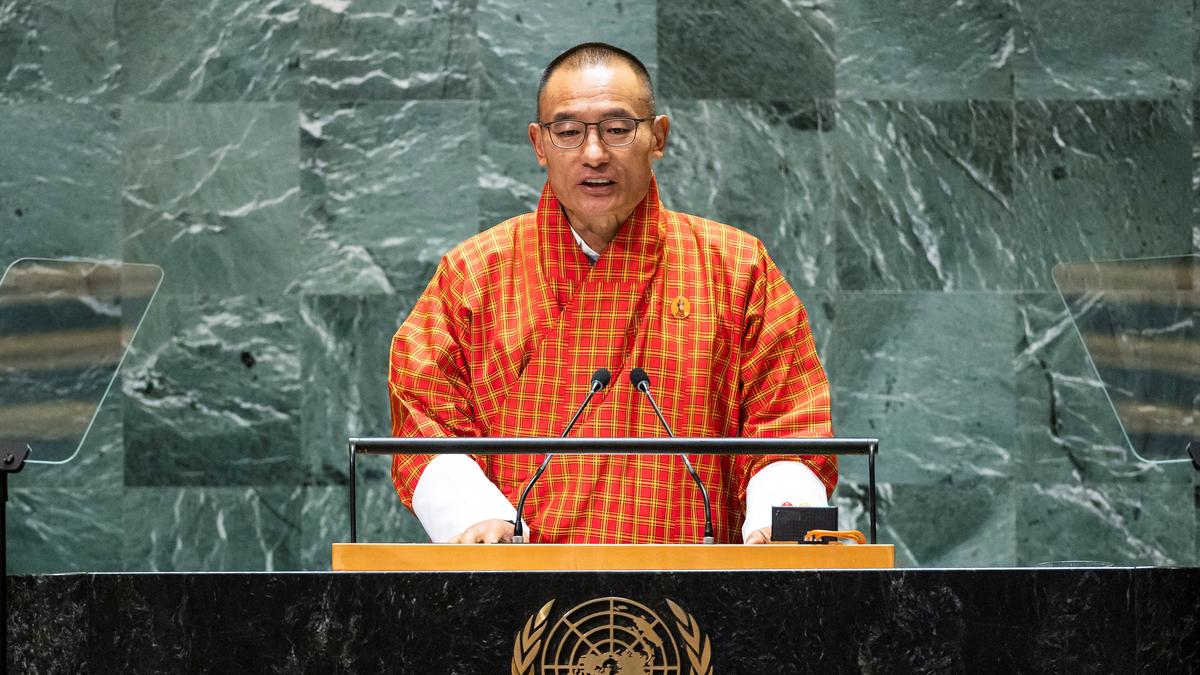
- 30 Sep 2024
In News:
With its significant economic growth and leadership of the Global South, India deserves a permanent seat at the UN Security Council, says Bhutan’s Prime Minister Tshering Tobgay.
Key Highlights:
- Economic Growth: Highlights India’s significant economic growth and its leadership in the Global South as justifications for this status.
- International Backing: India’s bid gains momentum with support from several UN Member States, including France, the UK, and the U.S.
- Need for Reform: Bhutan emphasized that the UNSC is outdated and must evolve to reflect contemporary geopolitical and economic realities.
- Advocacy for Representation: Bhutan has long called for a more representative and effective Security Council, backing India’s inclusion at the high table.
About UN Security Council (UNSC)
- Composition: Total of 15 member states.
- 5 permanent members (P5): China, France, Russia, the United Kingdom, and the United States (with veto rights).
- 10 non-permanent members elected for two-year terms.
- Election of Non-Permanent Members:
- Elected on a regional basis:
- 5 seats for African and Asian states.
- 2 seats for Latin American and Caribbean states.
- 1 seat for Eastern European states.
- 2 seats for Western European and other states.
- Elected on a regional basis:
- Presidency:
- Rotates monthly among members, following the English alphabetical order of country names.
- Primary Functions:
- Maintain international peace and security.
- Investigate and resolve disputes.
- Impose sanctions and authorize the use of force.
- Establish peacekeeping missions.
- Make recommendations to member states.
- Meeting Schedule:
- Regular meetings at UN headquarters in New York.
- Can convene at any time in response to emergencies.
- Decision-Making:
- Requires affirmative votes from at least 9 of the 15 members.
- Any of the P5 can veto resolutions, raising concerns about the Council's effectiveness.
- Subsidiary Bodies:
- Includes committees, working groups, and sanctions committees focused on specific issues like counter-terrorism, nuclear non-proliferation, and peacekeeping operations.
- Reforming the UN Security Council (UNSC)
- Charter Amendments:
- Reforming the UNSC requires amendments to the UN Charter.
- Voting Requirements:
- An amendment must be adopted by a two-thirds majority of the General Assembly.
- It must also be ratified by two-thirds of UN member states, including all permanent members of the UNSC.
- Charter Amendments:
INDIA TO SUPPORT TRINIDAD AND TOBAGO IN DEVELOPING UPI-LIKE PAYMENT SYSTEM
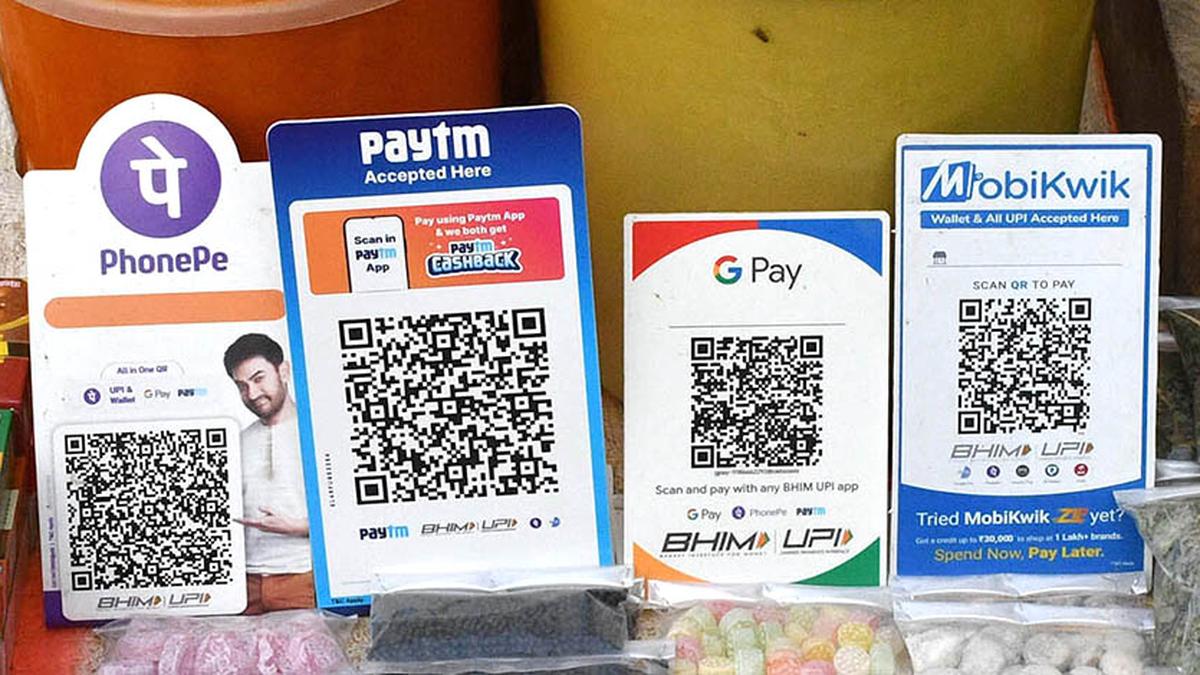
- 29 Sep 2024
In News:
- NPCI International Payments Limited (NIPL) has partnered with Trinidad and Tobago's Ministry of Digital Transformation to create a payment platform for person-to-person and person-to-merchant transactions.
- Modeling on UPI: The new digital payments system will be based on India’s Unified Payments Interface (UPI), which is widely recognized as a leading digital payment solution.
- Role of NPCI: NIPL, a quasi-government body under the Reserve Bank of India, manages India’s retail payment systems, including UPI.
Previous Initiatives
- Global Expansion: Earlier in 2024, NIPL also committed to establishing digital payment systems in Peru and Namibia, leveraging the UPI model.
- Ongoing Talks: NIPL is exploring opportunities with additional countries in Africa and South America to assist in building their payment infrastructures.
Significance:
- UPI has emerged as a transformative force in India's financial landscape, registering nearly 15 billion transactions in August 2024, with an estimated value of USD 245 billion.
- This strategic partnership aims to empower Trinidad and Tobago to establish a reliable and efficient real-time payments platform for both person-to-person (P2P) and person-to-merchant (P2M) transactions, expanding digital payments in the country and fostering financial inclusion.
GST COMPENSATION CESS
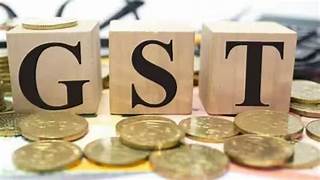
- 29 Sep 2024
In News:
- GST compensation cess likely to continue beyond January 2026, with potential rebranding and new end-use defined.
- Revenue Collection: Estimated Rs 20,000 crore expected from the cess by February 2026, with recent receipts of Rs 12,068 crore in August 2024.
- Cess Nature: The compensation cess, originally intended for revenue shortfall, cannot merge with the 28% GST slab due to regulatory limitations.
Financial Context
- RBI Study Insights: Weighted average GST rate decreased from 14.4% at launch to 11.6%, now even below 11%, raising concerns among states.
- State Concerns: Many states, including Punjab and Kerala, seek a 2-5 year extension for the compensation period to stabilize finances.
Regulatory Framework
- Cess Legislation: GST Compensation Cess is governed by the Goods and Services Tax (Compensation to States) Act, 2017, initially set for five years.
- Taxpayer Obligations: All suppliers of designated goods/services must collect the cess, except exporters and those under the composition scheme.
Distribution Mechanism
- Calculation of Compensation: Based on projected revenue growth (14%) against actual revenue, with payments distributed bi-monthly.
- Surplus Distribution: Any surplus in the compensation fund post-transition period will be shared between the Centre and states.
Future Considerations
- Ministerial Panel: A panel established by the GST Council will recommend the cess's future and revenue sharing post-compensation.
- Tax Expert Opinions: Some experts argue against pursuing the revenue-neutral rate, suggesting broader tax base expansion instead.
- Revenue Gap Solutions: Options for addressing compensation fund deficits include revising cess formulas, increasing rates, or market borrowing.
IBSA (INDIA, BRAZIL, SOUTH AFRICA) GROUPING
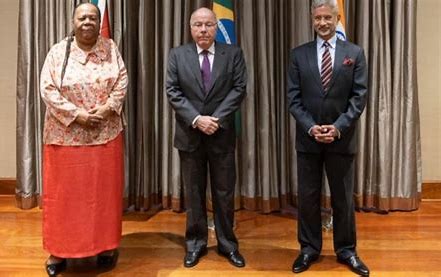
- 28 Sep 2024
In News:
In a significant move for global security, the Foreign Ministers of the IBSA (India, Brazil, South Africa) grouping issued a strong declaration against terrorism during the 79th UN General Assembly in New York. This declaration condemned terrorism in all its forms and reaffirmed the collective responsibility of the international community to eliminate terrorist safe havens worldwide.
Key Points from the IBSA Declaration:
- Universal Threat: The ministers stressed that terrorism is a threat that transcends borders, cultures, and governments.
- Rule of Law: They emphasized that counter-terrorism efforts must adhere to international law, particularly the UN Charter and human rights laws, ensuring civil liberties are respected.
- International Framework: A call was made for establishing a comprehensive international counter-terrorism framework, with the United Nations at its core, to coordinate global efforts against terrorism.
- Cross-Border Security: The declaration highlighted the need for stringent actions against the movement of terrorists and the financing of terrorist networks, condemning groups like Al-Qaeda, ISIS/Daesh, Lashkar-e-Tayyiba (LeT), and Jaish-e-Mohammad (JeM).
- Comprehensive Convention: A renewed commitment to accelerate the adoption of the Comprehensive Convention on International Terrorism at the UN was emphasized, aiming to create a unified legal framework for combating terrorism.
INDIA-UZBEKISTAN BILATERAL INVESTMENT TREATY (BIT)
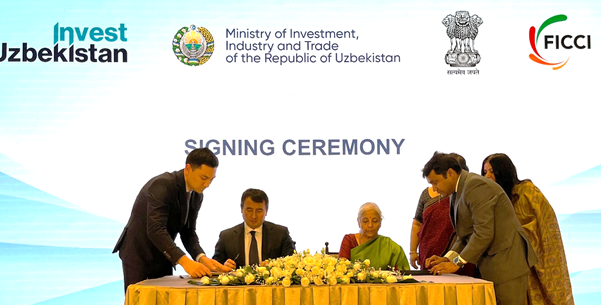
- 28 Sep 2024
In News:
India and Uzbekistan signed the Bilateral Investment Treaty (BIT) aimed at boosting the confidence of investors of both the countries.
Key Highlights:
- Investor Protections:
- Assured Protection: The BIT guarantees protection for investors from both countries, aligning with international standards.
- Minimum Standards: It establishes a minimum standard of treatment and non-discrimination for investors.
- Dispute Resolution: An independent arbitration forum will be available for dispute settlement.
- Investment Safeguards:
- Protection from Expropriation: The treaty safeguards investments from unjust expropriation.
- Transparency and Compensation: Provisions are included for transparency and compensation for losses incurred.
- Regulatory Balance: While protecting investors, the treaty maintains a balance with the state's right to regulate, ensuring adequate policy space for both countries.
Economic Context
- Shared Commitment: The BIT reflects the commitment of both nations to foster economic ties and create a resilient investment environment.
- Expected Outcomes: It is anticipated that the treaty will facilitate increased bilateral investments, benefiting businesses and economies in India and Uzbekistan.
- Current Investment Landscape: As of August 2024, Overseas Direct Investment (ODI) from India to Uzbekistan stands at $20 million, with Indian investments notable in sectors such as pharmaceuticals, amusement parks, automobile components, and hospitality.
India and Bilateral Investment Treaties
BITs are reciprocal agreements between two countries designed to promote and protect foreign private investments within each other's territories.
- Key Guarantees Established:
- National Treatment: Foreign investors are treated on par with domestic companies.
- Fair and Equitable Treatment: Investors receive treatment aligned with international law.
- Protection from Expropriation: Limits the ability of a country to seize foreign investments without appropriate compensation.
- Status of BITs in India
- Historical Context:
- Until 2015, India had signed BITs with 83 countries, with 74 currently in force. These agreements were based on the Indian Model BIT established in 1993.
- Revisions and Current Approach: In 2015, India revised its Model BIT text. Since then, India has:
- Signed new BITs/Investment Agreements with four countries.
- Entered negotiations with 37 countries/blocks for new agreements.
- Terminated older BITs with 77 countries, with only six remaining in force.
- Historical Context:
- Key Features of the Revised Model BIT
- Investor Protection:
- Provides robust protection for foreign investors in India and Indian investors abroad.
- Balances investor rights with government obligations.
- Investor Confidence:
- Enhances investor confidence by ensuring non-discriminatory treatment and a level playing field.
- Establishes an independent arbitration forum for dispute resolution.
- Investment Definition:
- Adopts an "enterprise"-based definition of investment to encompass various forms of investment.
- Dispute Settlement Provisions:
- Refined Investor-State Dispute Settlement (ISDS) provisions require investors to exhaust local remedies before seeking international arbitration.
- Limits arbitration tribunals to awarding monetary compensation only.
- Regulatory Authority Preservation:
- Excludes government procurement, taxation, subsidies, compulsory licenses, and national security from BIT coverage, ensuring the government retains regulatory authority.
- Investor Protection:
- Strategic Impact
- Preferred FDI Destination: The revised BIT aims to position India as a preferred destination for foreign direct investment (FDI).
- Protection of Outbound FDI: It also focuses on safeguarding outbound investments made by Indian entities.
GLOBAL INNOVATION INDEX (GII) 2024
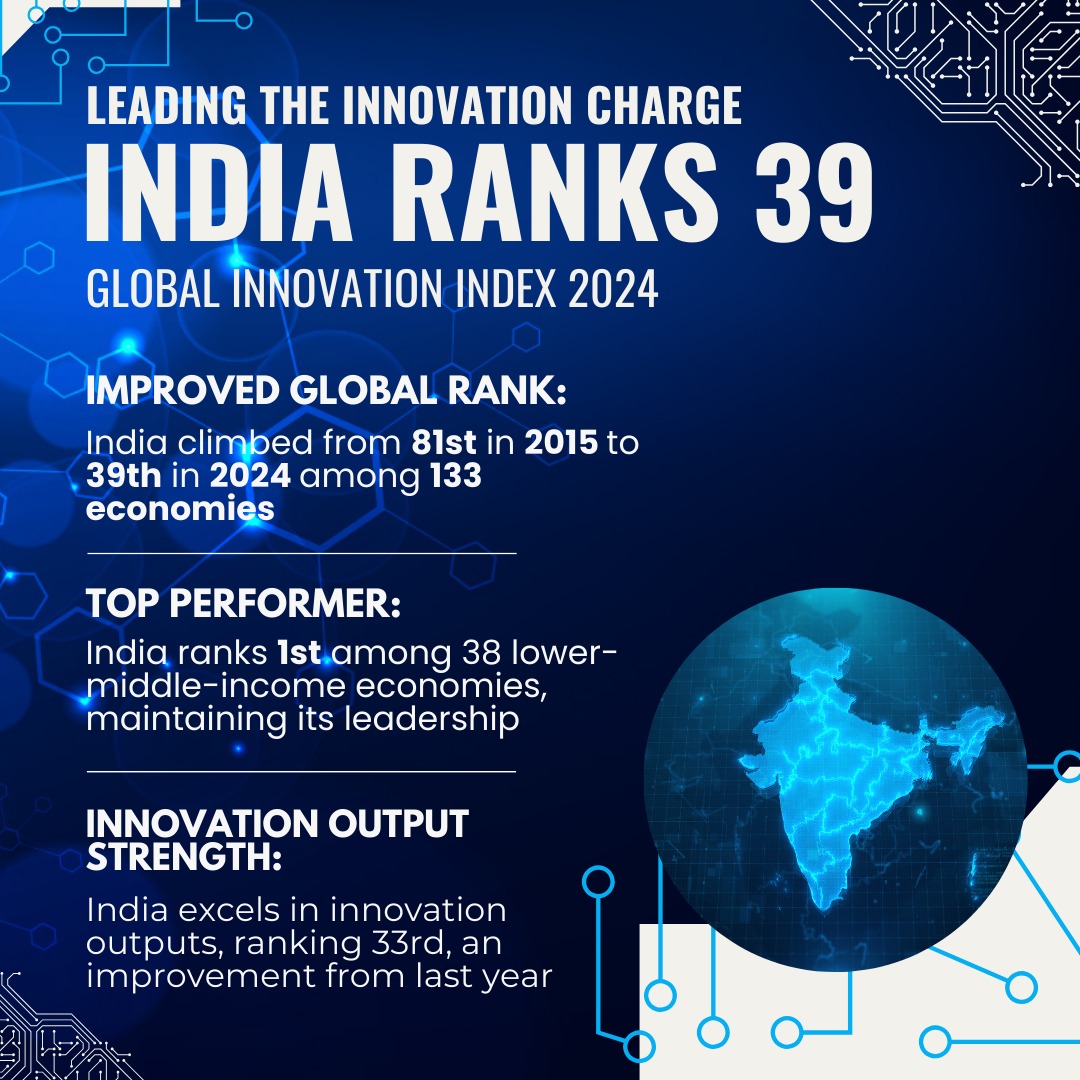
- 28 Sep 2024
In News:
- India has moved up to 39th place among 133 economies in the GII 2024, showcasing significant progress from its 81st position in 2015.
Key Details:
- Regional Leadership: India ranks first among the 10 economies in Central and Southern Asia, highlighting its emerging leadership in innovation within the region.
- Lower-Middle-Income Economies: India is also the top-ranked lower-middle-income economy in the GII.
- WIPO Science & Technology Ranking: India holds the 4th position in the World Intellectual Property Organization (WIPO) Science & Technology Cluster Ranking, indicating robust innovation capabilities.
- Top Science & Technology Clusters: Major Indian cities—Mumbai, Delhi, Bengaluru, and Chennai—are recognized among the world’s Top 100 S&T clusters, emphasizing urban centers' roles in fostering innovation.
- Intangible Asset Intensity: India ranks 7th globally in intangible asset intensity, reflecting a strong focus on knowledge-based assets and intellectual property.
Context and Significance of GII
- Purpose of GII: The GII evaluates innovation ecosystems of 133 economies, providing insights into trends that drive economic and social change through innovation.
- Global Leaders: The top five most innovative economies according to the GII 2024 are Switzerland, Sweden, the US, Singapore, and the UK.
- Fastest Climbers: India is among the fastest climbers in the GII over the past decade, alongside China, Turkey, Vietnam, and the Philippines.
Overview of WIPO
- Foundation and Mission: The World Intellectual Property Organization (WIPO), established in 1974 and part of the UN since then, aims to support global innovators and creators, ensuring the safe journey of their ideas to market.
- Membership: WIPO comprises 193 member states, including a diverse range of developing and developed countries, facilitating a broad exchange of intellectual property knowledge.
- Headquarters: Geneva, Switzerland.
PLANETARY BOUNDARIES AND OCEAN ACIDIFICATION
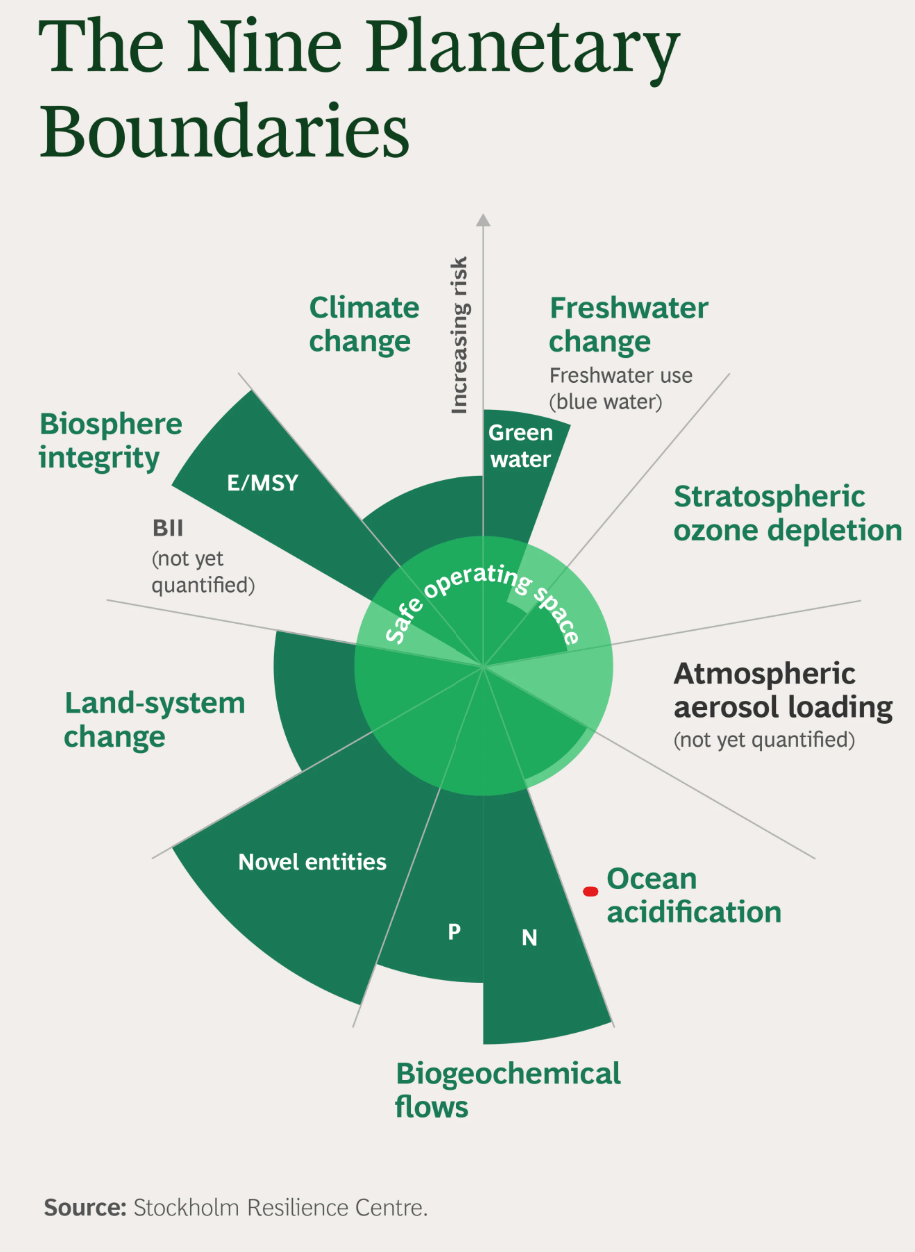
- 27 Sep 2024
In News:
A new report from the Potsdam Institute for Climate Impact Research (PIK) indicates that the world's oceans are nearing critical acidity levels.
- Key Findings:
- Nine Crucial Factors: The report identifies nine essential elements for sustaining life on Earth.
- Exceeded Limits: Six of these factors have already surpassed safe limits due to human activities.
- Ocean Acidification: This is poised to become the seventh boundary breached.
- Crossed Boundaries:
- Factors Affected:
- Climate change
- Loss of natural species and habitats
- Depletion of freshwater resources
- Increase in pollutants, including plastics and agricultural chemicals
- Factors Affected:
- Causes of Ocean Acidification:
- Primarily driven by rising carbon dioxide (CO2) emissions from burning fossil fuels (oil, coal, gas).
- Implications of Acidification:
- Damage to corals, shellfish, and phytoplankton, disrupting marine ecosystems.
- Threats to food supplies for billions of people.
- Reduced capacity of oceans to absorb CO2, exacerbating global warming.
- Ozone Layer Status:
- Currently not close to being breached; showing recovery since the banning of harmful chemicals in 1987.
- Air Quality Concerns:
- A ninth boundary related to particulate matter is near danger limits.
- Improvements in air quality are noted, but industrializing nations still face pollution risks.
- Tipping Points:
- Crossing these boundaries could lead to irreversible and catastrophic consequences for humanity and future generations.
- All boundaries are interconnected; breaching one can destabilize the entire system.
- Opportunities for Solutions:
- Addressing critical issues, such as limiting temperature rise to 1.5 degrees Celsius above pre-industrial levels, can have widespread benefits across multiple environmental challenges.
Planetary boundaries
- The planetary boundaries were introduced in 2009 to define the global environmental limits within which humans can safely live.
- Johan Rockström, former director of the Stockholm Resilience Centre, led a group of 28 renowned scientists to identify the nine processes that regulate the stability and resilience of the Earth system.
- Climate Change: Greenhouse gas concentrations, primarily CO2, are the primary metric here. Exceeding the recommended levels risks amplifying global warming.
- Ocean Acidification: Oceans absorb CO2, leading to decreased pH levels. This boundary measures the carbonate ion concentration, vital for marine life like corals.
- Stratospheric Ozone Depletion: The ozone layer protects life from harmful ultraviolet radiation. This boundary emphasizes the ozone concentration in the stratosphere.
- Nitrogen and Phosphorus Cycles: Excess nitrogen and phosphorus, often from fertilizers, can disrupt ecosystems. Here, the focus is on their flow into the environment.
- Freshwater Use: Freshwater is vital for life. This boundary pinpoints the annual consumption of freshwater resources.
- Land-System Change: As we modify landscapes, particularly through deforestation, we alter habitats and carbon storage capabilities. This threshold concerns the amount of forested land remaining.
- Biodiversity Loss: Biodiversity underpins ecosystem resilience. This metric observes the extinction rate of species.
- Atmospheric Aerosol Loading: Aerosols influence climate and human health. This boundary examines their density in the atmosphere.
- Chemical Pollution: Synthetic chemicals can harm ecosystems and human health. This boundary reviews their concentration and spread.
ASIA POWER INDEX
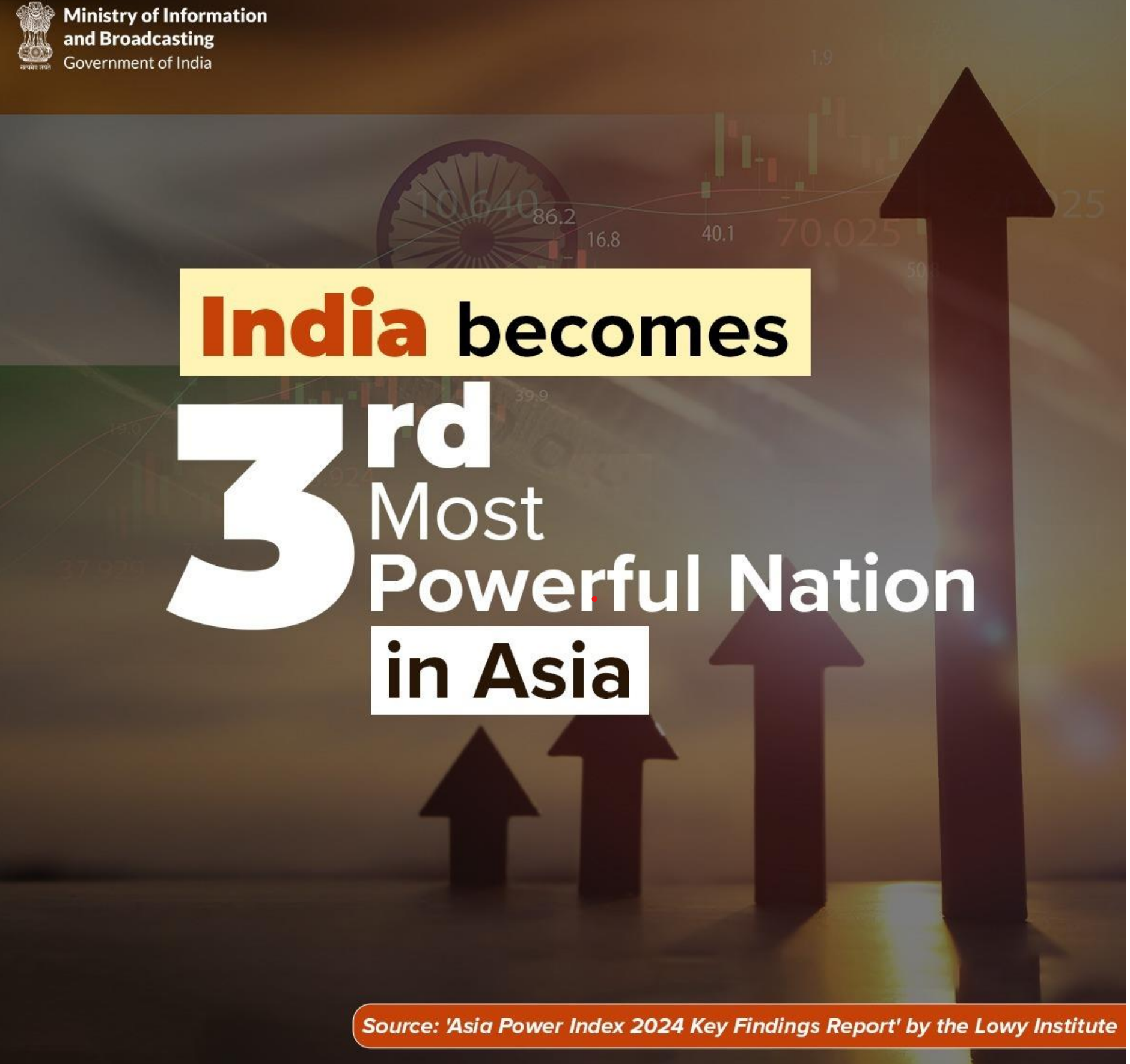
- 26 Sep 2024
In News:
In a major shift, India surpassed Japan to become the third-largest power in the Asia Power Index, reflecting its increasing geopolitical stature. This achievement is driven by India's dynamic growth, youthful population, and expanding economy, solidifying its position as a leading force in the region.
Key Factors Behind India’s Rise:
- Economic Growth: India has shown remarkable post-pandemic economic recovery, contributing to a 4.2-point rise in its Economic Capability. India’s massive population and strong GDP growth reinforce its standing as the world’s third-largest economy in PPP terms.
- Future Potential: India’s Future Resources score increased by 8.2 points, signalling a potential demographic dividend. Unlike its regional competitors, particularly China and Japan, India benefits from a youthful population that will continue to drive economic growth and labour force expansion in the coming decades.
- Diplomatic Influence: Prime Minister Narendra Modi’s leadership has garnered greater international recognition. India’s non-aligned strategic posture has allowed New Delhi to navigate complex international waters effectively. India ranked 6th in terms of diplomatic dialogues in 2023, reflecting its active engagement in multilateral forums.
- Further, India’s large population and economic capabilities offer it substantial promise. India’s score in Cultural Influence has also remained relatively strong, underpinned by its global diaspora and cultural exports.
- In addition, India’s role in multilateral diplomacy and security cooperation has been a point of emphasis. India's participation in dialogues, as well as its leadership in the Quad, has allowed it to play a significant role in regional security dynamics, albeit outside of formal military alliances.
Asia Power Index
- The Asia Power Index, launched by the Lowy Institute in 2018, is an annual measure of power dynamics in the Asia-Pacific region.
- It evaluates 27 countries across the Asia-Pacific, examining their ability to shape and respond to the external environment.
- The 2024 edition offers one of the most comprehensive assessments of power distribution in the region to date. Timor-Leste has been included for the first time, reflecting its growing importance in Southeast Asia.
- The Index focuses on both the material capabilities of states and the influence they exert on the international stage.
Criteria and Parameters of Power Measurement
Power in the Asia Power Index is divided into resource-based and influence-based determinants:
- Resource-Based Determinants:
- Economic Capability: The core economic strength of a country, measured through indicators like GDP at purchasing power parity (PPP), technological sophistication, and global economic connectivity.
- Military Capability: Evaluates conventional military strength based on defense spending, armed forces, weapon systems, and signature capabilities like long-range power projection.
- Resilience: The internal capacity to deter threats to state stability, including institutional robustness, geopolitical security, and resource security.
- Future Resources: Forecasts the future distribution of resources, including economic, military, and demographic factors projected for 2035.
- Influence-Based Determinants:
- Economic Relationships: The capacity to exercise leverage through trade, investment, and economic diplomacy.
- Defense Networks: The strength of alliances and partnerships, measured through military cooperation and arms transfers.
- Diplomatic Influence: The extent of a country's diplomatic reach, participation in multilateral forums, and foreign policy ambition.
- Cultural Influence: The ability to shape international public opinion through cultural exports, media, and people-to-people ties.
A country's overall power score is derived from a weighted average of these eight measures, encompassing 131 individual indicators. The results offer a nuanced understanding of how countries convert their resources into influence within the Asia-Pacific.
China test-fires an intercontinental ballistic missile into the Pacific Ocean
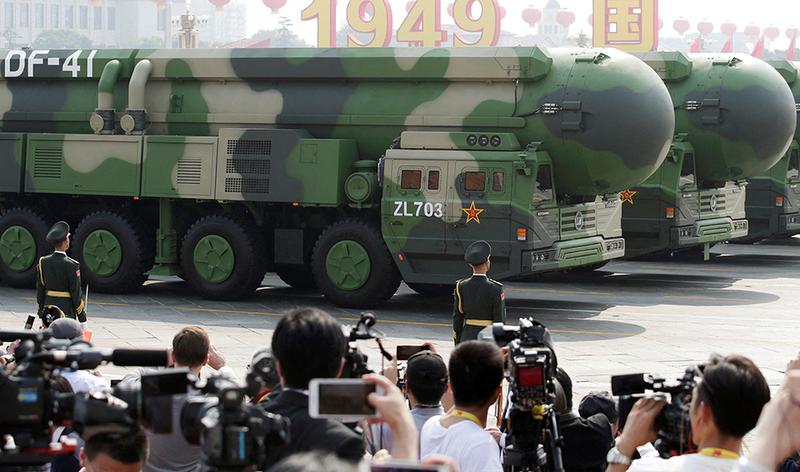
- 26 Sep 2024
In News:
China stated that it test-launched an intercontinental ballistic missile, firing it into the Pacific Ocean in its first such exercise in decades.
- Launch Details:
- The missile carried a dummy warhead and fell into a designated area in the high seas.
- The specific flight path and landing location were not disclosed.
- Testing Objectives:
- The launch tested weapon performance and troop training levels, achieving its expected objectives.
- Historical Context:
- This is the first ICBM test over the Pacific Ocean in over 40 years.
- China's first ICBM, the DF-5, was test-fired in 1980.
- ICBM Specifications:
- The latest ICBM, likely the DF-41, has an estimated range of 12,000 to 15,000 kilometers (7,400 to 9,300 miles), capable of reaching the US mainland.
- Strategic Messaging:
- Analysts interpret the test as a warning to the US, suggesting direct intervention in Taiwan could expose the American homeland.
- The test signals China's ability to engage multiple fronts simultaneously.
- Regional Tensions:
- Recent weeks have seen heightened tensions with Japan, the Philippines, and Taiwan due to military incursions and exercises.
- International Norms:
- There is a global expectation to notify nations of long-range missile launches to avoid miscalculations. China has limited agreements regarding this, primarily with Russia.
- Military Buildup:
- Under Xi Jinping, China has enhanced its nuclear capabilities and revamped the PLA’s Rocket Force.
- Recent satellite imagery indicates the construction of hundreds of ICBM silos in China’s deserts.
- Future Projections:
- As of 2023, China has over 500 operational nuclear warheads, projected to exceed 1,000 by 2030 according to the Pentagon.
- Implications of the Test:
- The ICBM test may be aimed at demonstrating military readiness despite recent corruption scandals within the Rocket Force.
About ICBMs:
- An intercontinental ballistic missile (ICBM) is a long-range ballistic missile system primarily designed for nuclear weapons delivery. They are powerful and destructive weapons, capable of travelling vast distances at incredibly high speeds.
- Key features of ICBMs:
- Range: Range greater than 5,500 kilometres with maximum ranges varying from 7,000 to 16,000 kilometres.
- Speed: ICBMs can travel at speeds exceeding 20,000 kilometres per hour.
- Payload: Typically designed to carry nuclear warheads, though they could potentially be used to deliver other types of weapons, such as chemical or biological weapons.
- Deployment: ICBMs can be launched from silos underground, mobile launchers on land, or submarines at sea.
- Countries having operational ICBMs: Russia, United States, China, France, India, United Kingdom, Israel and North Korea.
ACHIEVING GLOBAL NUCLEAR DISARMAMENT
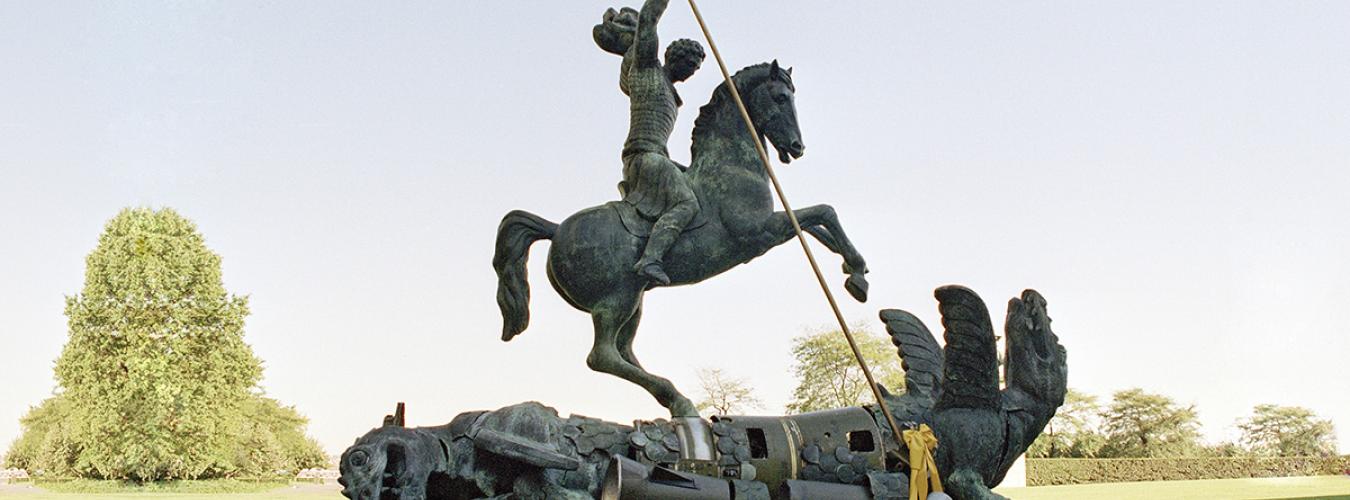
- 26 Sep 2024
Overview
Global nuclear disarmament remains a top priority for the United Nations, initially emphasized in the General Assembly’s first resolution in 1946. Despite historical efforts, approximately 12,100 nuclear weapons still exist today, with ongoing modernization plans in many countries.
Key Historical Milestones
- 1945: Atomic bombings of Hiroshima and Nagasaki, killing an estimated 213,000 people.
- 1946: First UN resolution identifies nuclear disarmament as a key goal.
- 1959: General Assembly endorses the goal of general and complete disarmament.
- 1963: Opening of the Partial Test Ban Treaty.
- 1978: First Special Session of the General Assembly dedicated to disarmament.
- 1996: Comprehensive Nuclear-Test-Ban Treaty opens for signature.
- 2017: Adoption of the Treaty on the Prohibition of Nuclear Weapons.
Recent Developments
- 2019: U.S. withdrawal from the Intermediate-Range Nuclear Forces Treaty.
- 2023: Russia suspends participation in the New START Treaty, raising concerns over arms control.
The International Day for the Total Elimination of Nuclear Weapons
- Established: December 2013, following a high-level meeting on nuclear disarmament.
- Observed: Annually on September 26.
- Purpose: Raise awareness about the dangers of nuclear weapons and promote their total elimination.
Goals of the International Day
- Enhance public education on the humanitarian risks associated with nuclear weapons.
- Mobilize international efforts towards a nuclear-weapon-free world.
Continuing Challenges
- The doctrine of nuclear deterrence remains central to the security policies of nuclear-armed states and their allies.
- No nuclear weapons have been destroyed under a treaty framework, and current disarmament negotiations are stagnant.
- Growing frustration among UN Member States over the slow progress in nuclear disarmament.
INDIA ATTENDS IPEF MINISTERIAL MEETING
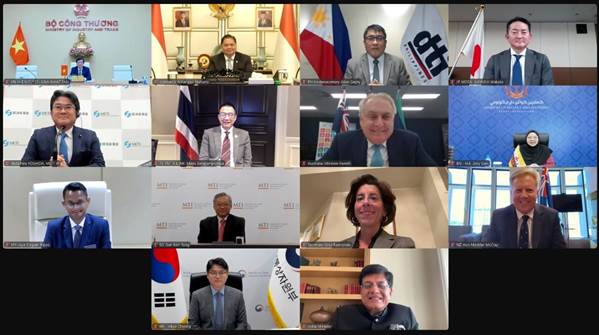
- 25 Sep 2024
In News:
Recently, the Union Commerce and Industry Minister Piyush Goyal joined a virtual meeting of the Indo-Pacific Economic Framework for Prosperity (IPEF) alongside representatives from 13 other partner countries. This meeting marked the third gathering focused on the framework's key pillars: Supply Chain Resilience, Clean Economy, and Fair Economy.
Key Agreements and Future Steps
- Entry into Force of Agreements:
- The IPEF partners celebrated the upcoming implementation of the Clean Economy Agreement and the Fair Economy Agreement on October 11 and October 12, 2024, respectively. These agreements aim to enhance economic cooperation and deliver tangible benefits to member nations.
- Supply Chain Resilience:
- The ministers discussed the progress in operationalizing the Supply Chain Agreement, emphasizing collaborative efforts to create more competitive and resilient supply chains. Key actions include:
- The formation of action plan teams for critical sectors like semiconductors, critical minerals, and chemicals, addressing vulnerabilities revealed during the COVID-19 pandemic.
- India's election as Vice Chair of the Supply Chain Council, which aims to streamline communication and cooperation among member countries.
- The ministers discussed the progress in operationalizing the Supply Chain Agreement, emphasizing collaborative efforts to create more competitive and resilient supply chains. Key actions include:
- Clean Economy Initiatives:
- The Clean Economy Agreement focuses on energy security, climate resilience, and reducing fossil fuel dependence. Ministers acknowledged the advancement of eight Cooperative Work Programs (CWPs) addressing topics such as hydrogen and carbon markets.
- The first IPEF Investor Forum, held in Singapore, facilitated discussions on investment opportunities in climate-friendly technologies.
- Fair Economy Measures:
- The Fair Economy Agreement aims to bolster anti-corruption measures and improve tax administration efficiency. Upcoming workshops will address foreign bribery laws and public procurement oversight.
- India highlighted its own anti-corruption measures and commitment to transparency under Prime Minister Modi's leadership.
About IPEF
Launched on May 23, 2022, in Tokyo, IPEF includes 14 countries: Australia, Brunei, Fiji, India, Indonesia, Japan, South Korea, Malaysia, New Zealand, Philippines, Singapore, Thailand, Vietnam, and the USA. The framework seeks to enhance economic engagement, stability, and prosperity across the Indo-Pacific region through its four key pillars: Trade, Supply Chain Resilience, Clean Economy, and Fair Economy.
SUPREME COURT RULING ON CHILD SEXUAL EXPLOITATIVE MATERIAL: KEY HIGHLIGHTS
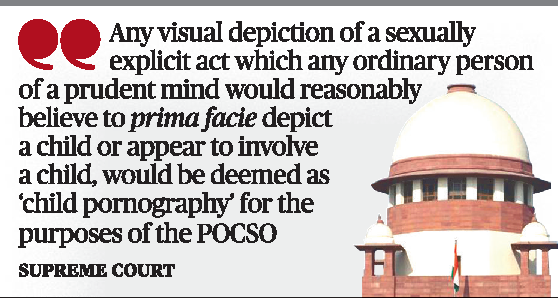
- 24 Sep 2024
Overview of the Ruling
- Date: Recent ruling by the Supreme Court of India.
- Context: Determined that viewing, downloading, storing, or distributing material involving child sexual exploitation constitutes a criminal offense under the POCSO Act and the Information Technology Act.
- Appeal Background: Decision overturned a Madras High Court ruling that deemed private viewing of such material non-criminal.
Terminology and Legislative Recommendations
- Terminology Change: Supreme Court advocates replacing “child pornography” with “Child Sexual Exploitative and Abuse Material” (CSEAM) to avoid trivialization of the crime.
- Amendment Call: Court urged Parliament to amend the POCSO Act and advised promulgating an ordinance for immediate effect.
Key Highlights of the Ruling
- Redefinition of Terminology: Emphasizes that "pornography" may imply consensual acts, misrepresenting the nature of child exploitation.
- Expansion of Section 15 of the POCSO Act:
- Possession Without Reporting: Individuals must delete or report any stored CSEAM; failure results in penalties.
- Intent to Transmit: Possessing CSEAM with intent to share, barring reporting, is punishable.
- Commercial Possession: Storing CSEAM for commercial purposes faces the strictest penalties.
- Concept of Inchoate Offenses: Classifies offenses related to CSEAM as preparatory actions towards further crimes.
- Redefinition of Possession:
- Includes "constructive possession," where individuals can be liable without direct physical possession.
- Watching CSEAM online without downloading can still be deemed possession.
- Educational Reforms:
- Court urged for comprehensive sex education to counter stigma and misconceptions.
- Curriculum should cover consent, healthy relationships, and respect for diversity.
- Awareness of the POCSO Act: Central and state governments are mandated to promote awareness, supported by the National Commission for Protection of Child Rights (NCPCR).
- Formation of Expert Committee: To develop programs for health and sex education while increasing POCSO awareness among children.
- Victim Support and Awareness: Emphasized the need for psychological support, counseling, and educational assistance for victims.
Status of Crimes Against Children
- Increasing Incidents: India leads in online child sexual abuse imagery, with 25,000 uploads reported from April to August 2024.
- Geographical Distribution: Major uploads identified in Delhi, Maharashtra, Gujarat, Uttar Pradesh, and West Bengal.
- Rising Cases: From 331 cases in 2017 to 781 in 2018, with 1,171 cases of inappropriate content dissemination reported in 2022.
Overview of the POCSO Act
- Purpose: Addresses sexual exploitation and abuse of children, defining a child as anyone under 18.
- Features:
- Gender-Neutral: Recognizes that both genders can be victims.
- Victim Confidentiality: Mandates protection of victims’ identities.
- Mandatory Reporting: Requires reporting of suspected abuse.
Gaps in Implementation
- Support Persons: Lack of designated support persons for victims; 96% of cases showed inadequate support during legal processes.
- POCSO Courts: Only 408 designated courts across 28 states as of 2022, leading to access issues.
- Special Prosecutors: Shortage of trained public prosecutors for POCSO cases.
Conclusion
- Call for Collaboration: Emphasizes the need for a coordinated approach involving educators, healthcare providers, and law enforcement to combat child sexual exploitation.
- Societal Responsibility: A shift in societal attitudes is essential for preventing victimization and ensuring recovery for victims.
KEY FINDINGS ON ATROCITIES AGAINST SCS AND STS (2022)
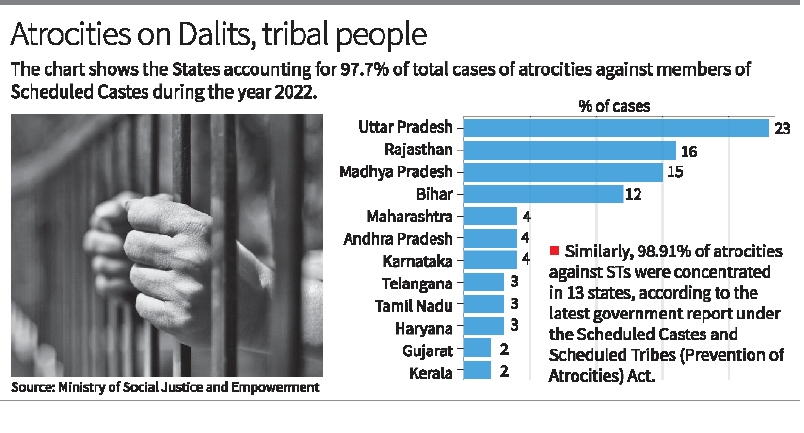
- 23 Sep 2024
In News:
According to the latest report under the Scheduled Castes and Scheduled Tribes (Prevention of Atrocities) Act by the Social Justice and Empowerment Ministry, the majority of atrocities against Scheduled Tribes (STs) were also concentrated in 13 states, which reported 98.91% of all cases in 2022.
- Case Statistics:
- Total cases of atrocities against Scheduled Castes (SCs): 51,656
- Total cases against Scheduled Tribes (STs): 9,735
- 97.7% of SC cases and 98.91% of ST cases reported from 13 states.
- States with Highest Incidents:
- SCs:
- Uttar Pradesh: 12,287 cases (23.78%)
- Rajasthan: 8,651 cases (16.75%)
- Madhya Pradesh: 7,732 cases (14.97%)
- Other significant states: Bihar (6,799), Odisha (3,576), Maharashtra (2,706)
- STs:
- Madhya Pradesh: 2,979 cases (30.61%)
- Rajasthan: 2,498 cases (25.66%)
- Odisha: 773 cases (7.94%)
- Other significant states: Maharashtra (691), Andhra Pradesh (499)
- SCs:
- Charge Sheets and Investigations:
- SC-related cases: 60.38% resulted in charge sheets; 14.78% ended with final reports (false claims/lack of evidence).
- ST-related cases: 63.32% led to charge sheets; 14.71% concluded similarly.
- Pending investigations by end of 2022: 17,166 SC cases, 2,702 ST cases.
- Conviction Rates:
- Decline from 39.2% in 2020 to 32.4% in 2022.
- Infrastructure Deficiencies:
- Only 194 out of 498 districts in 14 states have established special courts for these cases.
- Lack of identified atrocity-prone areas in states like Uttar Pradesh despite high case numbers.
- Protection Cells:
- SC/ST protection cells established in multiple states and union territories.
Reasons for Atrocities Against SCs and STs
- Caste Prejudice: Deep-rooted hierarchies and social exclusion lead to violence.
- Land Disputes: Conflicts over land access among historically deprived SC/ST communities.
- Economic Marginalization: Limited access to education and resources heightens vulnerability.
- Power Imbalance: Dominant castes wield political and social influence, perpetuating discrimination.
- Inadequate Law Enforcement: Weak implementation of protective laws and bureaucratic bias hinder justice.
- Political Exploitation: Caste tensions are sometimes used for electoral gains.
Scheduled Castes and Scheduled Tribes (Prevention of Atrocities) Act, 1989
- Objective: Protect SCs and STs from caste-based violence and discrimination.
- Key Provisions:
- Defines various offences against SC/ST members, prescribing stricter punishments.
- Excludes anticipatory bail provisions for accused under the Act.
- Mandates establishment of special courts for speedy trials.
- Investigations must be conducted by senior police officers and completed within stipulated time frames.
- Recent Amendments:
- 2015: Enhanced protections for SC/ST women.
- 2019: Restored original provisions for arrest procedures following a Supreme Court ruling.
Recommendations for Improvement
- Strengthen Legal Framework: Establish more special courts and train personnel in sensitive handling of SC/ST cases.
- Improve Reporting Mechanisms: Enhance systems for victims to report atrocities without fear.
- Awareness Campaigns: Educate communities on SC/ST rights and legal protections.
- Targeted Interventions: Identify and address issues in atrocity-prone districts.
- Monitoring and Evaluation: Implement frameworks for accountability and continuous improvement in addressing these issues.
- Collaborate with NGOs: Work with civil society to support victims and advocate for their rights.
INDO-PACIFIC ECONOMIC FRAMEWORK (IPEF)
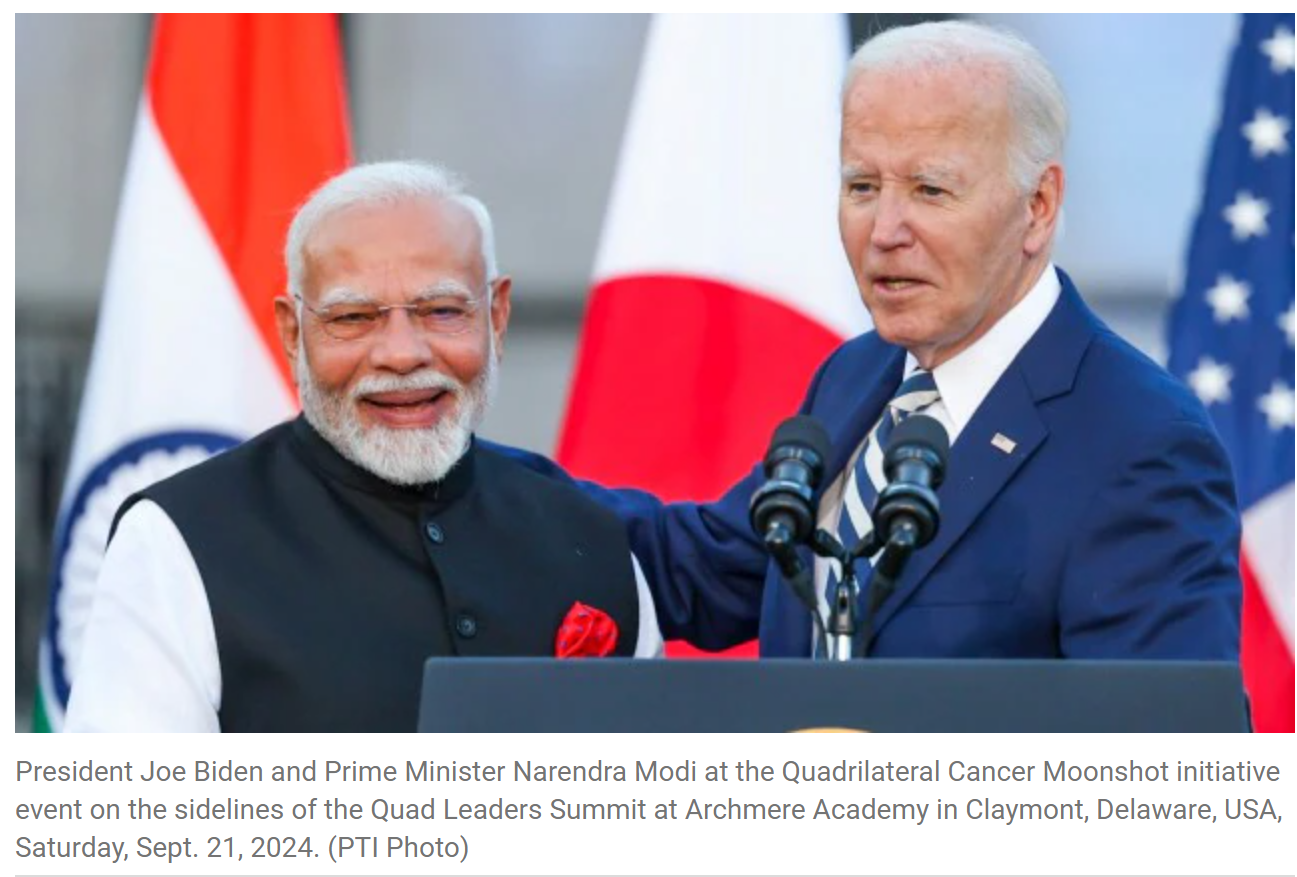
- 23 Sep 2024
In News:
India signed agreements within the US-led 14-member IPEF focused on a clean and fair economy.
- Objectives:
- Facilitate development, access, and deployment of clean energy and climate-friendly technologies.
- Strengthen anti-corruption measures and promote tax transparency among member countries.
- Clean Economy Agreement:
- Aims to accelerate energy security and mitigate greenhouse gas (GHG) emissions.
- Focuses on innovative methods to reduce reliance on fossil fuels and promote technical cooperation.
- Fair Economy Agreement:
- Seeks to create a transparent and predictable business environment to enhance trade and investment.
- Emphasizes information sharing, asset recovery facilitation, and strengthening cross-border investigations.
- Funding Mechanisms:
- IPEF offers platforms for technical assistance and concessional funding.
- IPEF Catalytic Capital Fund: Initial grant of $33 million aimed to catalyze $3.3 billion in private investments.
- PGI Investment Accelerator: Received $300 million from the US International Development Finance Corporation.
- Concerns Raised:
- Experts highlighted concerns over the secrecy of IPEF negotiations with limited public input.
- Expressed hope that India has not agreed to a non-derogation clause that could limit domestic regulatory flexibility for national projects.
- Potential Risks:
- Most standards discussed in IPEF are aligned with those in the US and OECD countries.
- India risks compliance pressures in future trade deals if it adopts these standards without adequate preparation.
- Strategic Importance of IPEF:
- Involves 14 member countries, focusing on economic cooperation through four key pillars: trade, supply chain resilience, clean economy, and fair economy.
- Represents 40% of the global economy and 28% of world trade, highlighting India's commitment to regional partnerships alongside the US, Japan, Australia, and other Indo-Pacific nations.
QUAD CANCER MOONSHOT
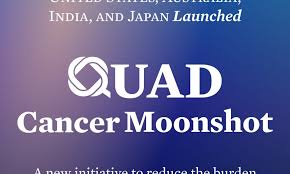
- 23 Sep 2024
In News:
The Quad Cancer Moonshot Initiative is a significant collaborative effort among the Quad countries—India, the United States, Australia, and Japan—aimed at combating cancer through innovative strategies. The initiative focuses on key areas such as preventing and detecting cancer, improving treatment, and alleviating the disease's impact on patients and families.
Key Highlights of the Quad Cancer Moonshot Initiative:
- Focus Areas:
- Cervical Cancer Screening: Enhancing access to screening programs.
- HPV Vaccination: Increasing vaccination rates against HPV, which is the leading cause of cervical cancer.
- Patient Treatment: Improving treatment protocols and accessibility for cancer patients.
- India’s Contributions:
- Financial Commitment: India has pledged $10 million to support the WHO’s Global Initiative on Digital Health, aimed at enhancing digital health technologies for cancer care in the Indo-Pacific region.
- Material Support: India will provide cervical cancer screening kits, detection tools, and HPV vaccines valued at $7.5 million to bolster healthcare initiatives in the region.
- AI-based Protocols: Development of AI-driven treatment protocols to improve care delivery for cancer patients.
- Capacity Building: India aims to enhance radiotherapy services and overall cancer prevention strategies in the Indo-Pacific.
This initiative represents a strong commitment to fostering international collaboration in healthcare, particularly in the prevention and treatment of cervical cancer. By empowering communities with accessible tools and resources, the Quad countries aim to significantly reduce the burden of cancer in the region.
QUAD GROUPING
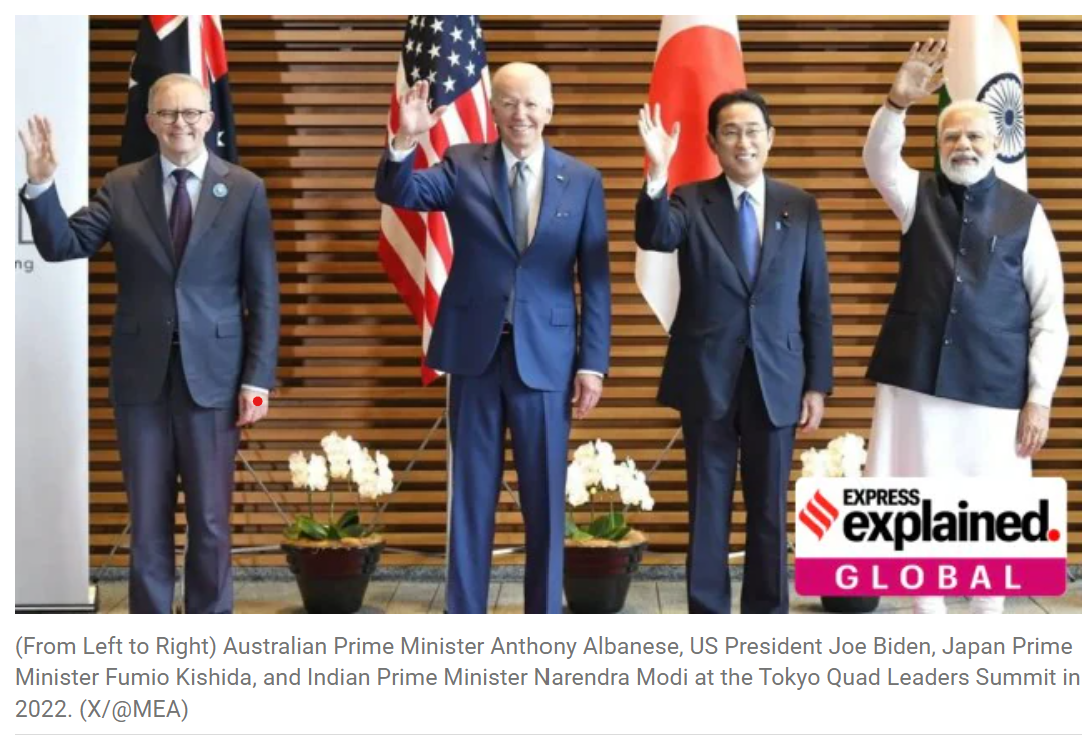
- 22 Sep 2024
In News:
Prime Minister Narendra Modi arrived in the United States, where he will participate in the fourth Quad Leaders Summit in Wilmington, Delaware.
What is the Quad Grouping?
The Quad, or Quadrilateral Security Dialogue, is an informal strategic alliance comprising India, the United States, Japan, and Australia. Originally formed in response to the Indian Ocean tsunami in 2004, the Quad aims to foster collaboration in various areas, but its primary focus has become countering the influence of China in the Indo-Pacific region.
Historical Background
- 2004: The Quad began as a response to the Indian Ocean tsunami, facilitating disaster relief.
- 2007: Japanese PM Shinzo Abe formalized the alliance.
- 2017: Amid rising Chinese assertiveness, the Quad was revitalized, expanding its objectives beyond maritime security.
Structure and Characteristics
- The Quad is not a formal organization; it lacks a secretariat or permanent decision-making body like the EU or UN.
- It focuses on strengthening bilateral and multilateral ties among member nations.
- Unlike NATO, the Quad does not include collective defense provisions but conducts joint military exercises to demonstrate unity.
Key Developments
- In 2020, the Malabar naval exercises expanded to include Australia, marking the first joint military exercises of the Quad since its resurgence.
- The first in-person summit took place in Washington, D.C. in 2021.
Objectives of the Quad
The Quad has outlined several primary objectives:
- Maritime Security: Ensuring safe and open sea routes in the Indo-Pacific.
- Climate Change: Addressing environmental challenges collaboratively.
- Investment Ecosystem: Creating opportunities for economic investment in the region.
- Technological Innovation: Promoting advancements and cooperation in technology.
- Public Health: Collaborating on initiatives like vaccine diplomacy during the COVID-19 pandemic.
Expansion and Future Directions
The Quad members have discussed expanding the partnership to include countries like South Korea, New Zealand, and Vietnam. In a joint statement, they reaffirmed their commitment to a free, open, resilient, and inclusive Indo-Pacific governed by international law.
Challenges and Opposition
China views the Quad as an effort to encircle and contain its influence. Beijing has criticized the grouping, labeling it as a strategy that incites discord among Asian nations.
100 Years of the Discovery of the Indus Civilization
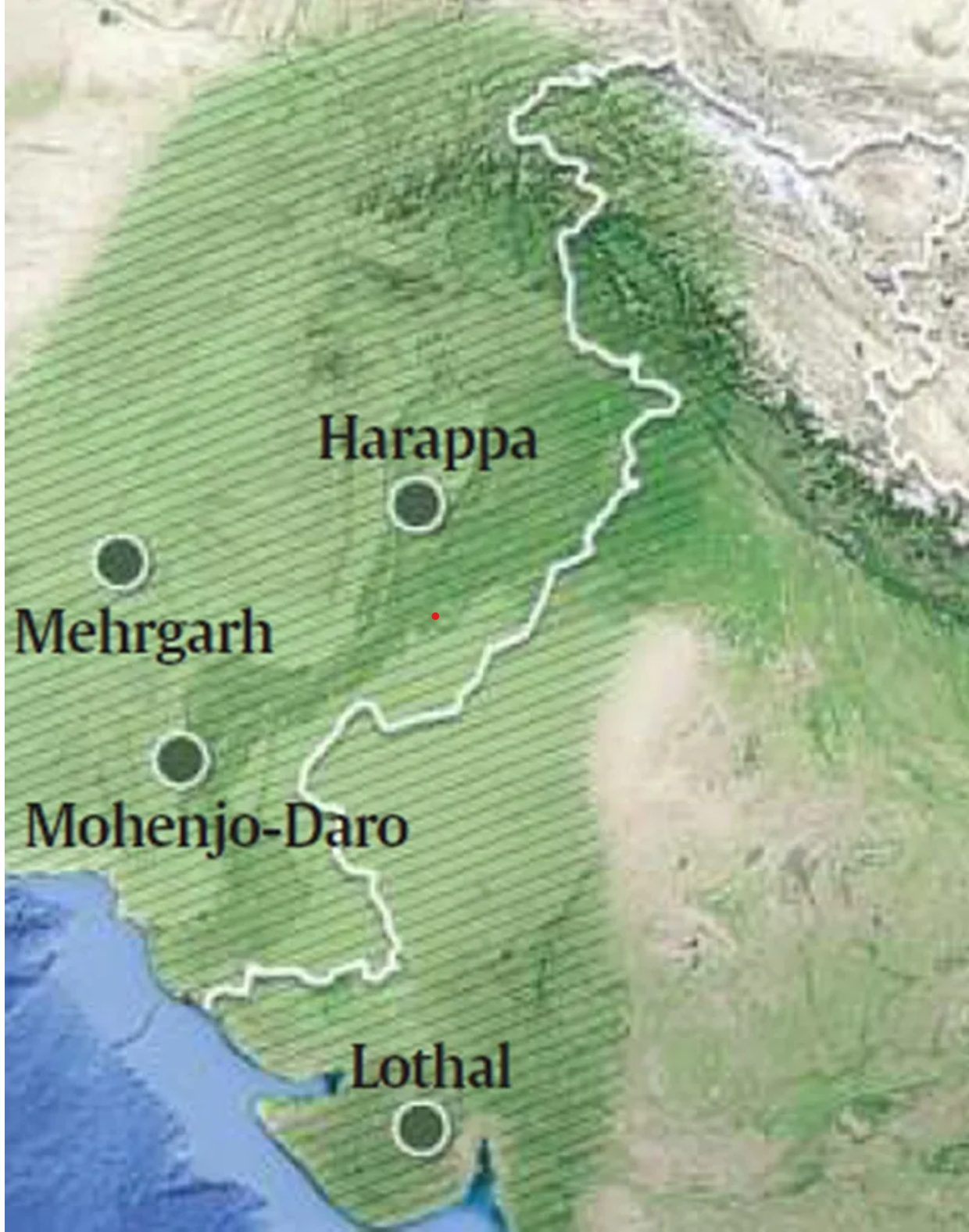
- 22 Sep 2024
Introduction
The centenary of the announcement of the Indus Valley Civilization (IVC) by Sir John Marshall on September 20, 1924, marks a significant milestone in archaeological history. This civilization, known for its advanced urban planning, encompasses over 2,000 sites across India, Pakistan, and Afghanistan.
Historical Context
Discovery of the Indus Civilization
- John Marshall's Role: As the Director-General of the Archaeological Survey of India (ASI), Marshall played a pivotal role in the excavations of Harappa and Mohenjodaro.
- Initial Findings: The civilization was revealed through meticulous work over two decades, beginning with Marshall's initial interest in the antiquities of India.
The Process of Discovery
The Concept of 'The Slow Hunch'
- Definition: Inspired by Steven Johnson's idea of 'the slow hunch,' this concept highlights how insights develop over time, similar to Joseph Priestley's early experiments with oxygen.
- Application to Marshall: Marshall's initial curiosity about the antiquity of India was nurtured through years of observations and explorations, culminating in the excavation of Harappa in 1921.
Key Individuals Involved
- Daya Ram Sahni: Conducted the first excavations at Harappa, uncovering evidence of an ancient culture.
- Rakhaldas Banerji: Excavated Mohenjodaro in 1922, leading to significant discoveries that indicated a widespread civilization.
Institutional Challenges
Limitations within ASI
- Lack of Collaboration: The ASI lacked a platform for archaeologists to share insights, impeding a collaborative approach to discoveries.
- Marshall's Focus: His dedication to ongoing projects, particularly at Taxila, resulted in delays in recognizing the significance of findings at Harappa and Mohenjodaro.
Announcing the Discovery
Marshall's Publication
- Impactful Presentation: In September 1924, Marshall's article vividly described the architectural and cultural features of the Indus Civilization, captivating readers.
- Scholarly Reception: The discovery sparked immediate scholarly interest, leading to further inquiries into the civilization's connections with ancient Mesopotamia.
Characteristics of the Harappan Civilization
Overview
- Timeframe: Flourished around 2500 BCE, classified as a Bronze-age civilization.
- Major Sites: Notable locations include Harappa, Mohenjodaro, and Lothal.
Key Features
- Urban Planning: Cities featured grid layouts, advanced drainage systems, and distinct public and private spaces.
- Agriculture and Economy: The economy thrived on agriculture, trade, and crafts, with evidence of cotton production and extensive trade networks.
Religious Practices
- Deities and Symbols: Terracotta figurines and seals indicate worship of fertility deities and animal figures, suggesting a rich spiritual life.
Reasons for Decline
Theories of Collapse
- Environmental Changes: Shifts in rainfall and tectonic activity may have disrupted agriculture and led to resource scarcity.
- Invasion Theories: While some suggest Indo-European invasions, evidence of cultural continuity challenges this narrative.
Recent Initiatives
Preservation and Promotion
- National Maritime Heritage Complex: Development at Lothal aims to highlight maritime history and attract tourism.
- UNESCO Recognition: Dholavira was added to the World Heritage list in 2021, showcasing the importance of IVC sites.
INDIA JOINS THE INTERNATIONAL BIG CAT ALLIANCE (IBCA)
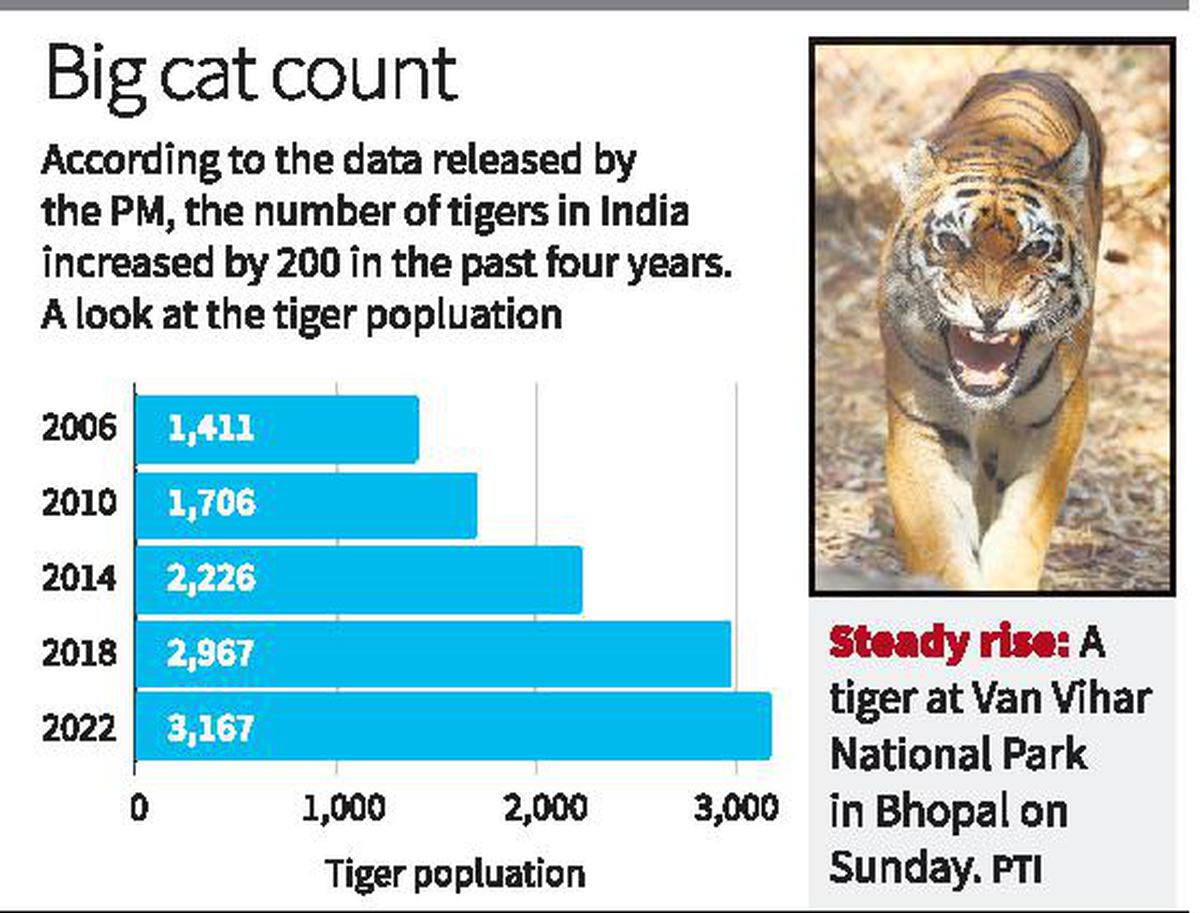
- 21 Sep 2024
In News:
India formally joined the International Big Cat Alliance (IBCA), launched by Prime Minister Narendra Modi on April 9, 2023, during the 50th anniversary of Project Tiger.
- Objective: The IBCA aims to conserve the world's seven big cat species: tiger, lion, leopard, snow leopard, cheetah, jaguar, and puma, focusing on their protection and natural habitats.
- Founding Members: India joins Nicaragua, Eswatini, and Somalia as founding members of the IBCA, which will collaborate with 24 countries and nine organizations.
- Headquarters: The IBCA will be headquartered in India, facilitating efforts to protect big cats and their ecosystems.
Purpose and Goals of IBCA
- Conservation Focus: The alliance addresses common challenges in the protection of the seven big cats, promoting sustainable resource use and tackling climate change.
- Collaboration and Support: The IBCA will provide a platform for member nations to share knowledge, expertise, and support recovery efforts in potential habitats.
- Mobilization of Resources: The alliance aims to mobilize financial and technical resources for effective conservation strategies based on global experiences.
Background and Evolution
- Inception: PM Modi proposed an international initiative against poaching and illegal wildlife trade in 2019, advocating for collaboration among tiger range countries.
- Extension of Project Tiger: The IBCA serves as an extension of India's long-standing commitment to wildlife protection, initially exemplified by the launch of Project Tiger in 1973.
Big Cat Species Overview
- Tiger (Endangered)
- Population: Approx. 3,167 in India, accounting for over 75% of the global population.
- Threats: Habitat loss, poaching, and climate change impacting their territory.
- Lion (Vulnerable)
- Population: Estimated 700 in India.
- Threats: Habitat reduction and targeted poaching.
- Leopard (Near Threatened)
- Population: Around 13,000 in India, with approximately 250,000 globally.
- Threats: Habitat loss and human-wildlife conflict.
- Snow Leopard (Vulnerable)
- Population: 400-700 in India, with global estimates of 4,000-6,500.
- Threats: Poaching, habitat loss, and human disturbances.
- Cheetah (Vulnerable)
- Population: Declined to less than 7,000 globally; declared extinct in India in 1952.
- Threats: Habitat loss, climate change, and illegal trafficking.
- Jaguar (Near Threatened)
- Population: Approximately 173,000 globally, primarily in South America.
- Threats: Deforestation, illegal hunting, and habitat fragmentation.
- Puma (Near Threatened)
- Population: Estimated 50,000, experiencing a decline.
- Threats: Habitat loss and human-wildlife conflict.
Future Initiatives
- Translocation Efforts: Following successful cheetah translocations from Namibia and South Africa, India plans to explore similar initiatives for other big cats.
- Global Cooperation: The IBCA will strengthen conservation efforts by working with a broader network of range countries to combat poaching and promote habitat preservation.
One Nation, One Election
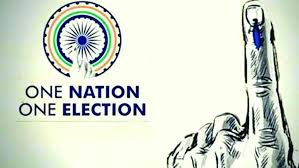
- 19 Sep 2024
In News:
The Union cabinet has recently approved the "One Nation, One Election" proposal, facilitating the conduct of simultaneous elections in India. This initiative follows a report submitted in March by a high-level committee chaired by former President Ram Nath Kovind, which unanimously recommended synchronizing Lok Sabha and State Assembly elections, along with local body polls, within 100 days.
What are Simultaneous Polls?
Simultaneous polls aim to align the timing of Lok Sabha and State Assembly elections across all states, thereby reducing the frequency of elections. Historically, simultaneous elections were held during the first four general election cycles (1952, 1957, 1962, and 1967), but this practice ended in 1959 after the dismissal of the Kerala government. Since then, due to premature dissolutions of various Assemblies, elections have been staggered. Currently, only four states—Andhra Pradesh, Odisha, Arunachal Pradesh, and Sikkim—hold simultaneous elections with the Lok Sabha.
Arguments For and Against
Proponents argue that simultaneous elections can significantly reduce election-related costs, which amounted to approximately ?3,870 crore during the 2014 general elections. They also highlight that the Model Code of Conduct triggers twice in a five-year cycle, leading to extended periods of governance downtime.
Opponents caution that this approach may favor larger political parties with national reach, potentially sidelining smaller regional parties. A 2015 study found that the likelihood of a party winning both Lok Sabha and Assembly elections when held simultaneously is 77%, dropping to 61% if elections are spaced six months apart.
Implementation Process
The committee proposed a two-step implementation:
- Simultaneous Elections: Conduct elections for both the Lok Sabha and State Legislative Assemblies together.
- Synchronizing Local Elections: Hold elections for municipalities and panchayats within 100 days following the general elections.
Following the announcement of the "appointed date," the terms of all State Assemblies constituted after that date would end with the Lok Sabha's term. This could lead to most State governments not completing their five-year terms, even if they maintain a majority.
Required Constitutional Changes
Several amendments to the Constitution have been proposed:
- Introduction of Article 82A: This would require all Legislative Assemblies elected after the appointed date to conclude with the Lok Sabha’s term.
- Amendment of Article 327: Expanding Parliament's powers to include the conduct of simultaneous elections.
- Revisions to Articles 83 and 172: Defining the five-year term as the "full term" and any remaining period after premature dissolution as the "unexpired term."
- Introduction of Article 324A: Empowering Parliament to ensure that municipality and panchayat elections occur alongside general elections.
- Amendments for Union Territories: Ensuring that Assembly elections in Union Territories align with simultaneous elections.
- Single Electoral Roll: Proposing a common electoral roll for all elections, to be managed by the Election Commission of India (ECI).
State Ratification
Under Article 368, amending the Constitution may require ratification by state legislatures. The panel believes that syncing Assembly elections with Lok Sabha elections will not need state ratification, but amendments for a common electoral roll and synchronization of local elections will require cooperation from the states. The ruling BJP, currently in power in several states, will need to navigate upcoming Assembly elections in Haryana, Maharashtra, and Jharkhand to secure this support.
Conclusion
The "One Nation, One Election" initiative aims to streamline India's electoral process, potentially enhancing governance and reducing costs. However, its success depends on achieving political consensus and implementing necessary constitutional amendments, which will require collaboration among various political parties and state governments.
Fast-track special courts (FTSCs)
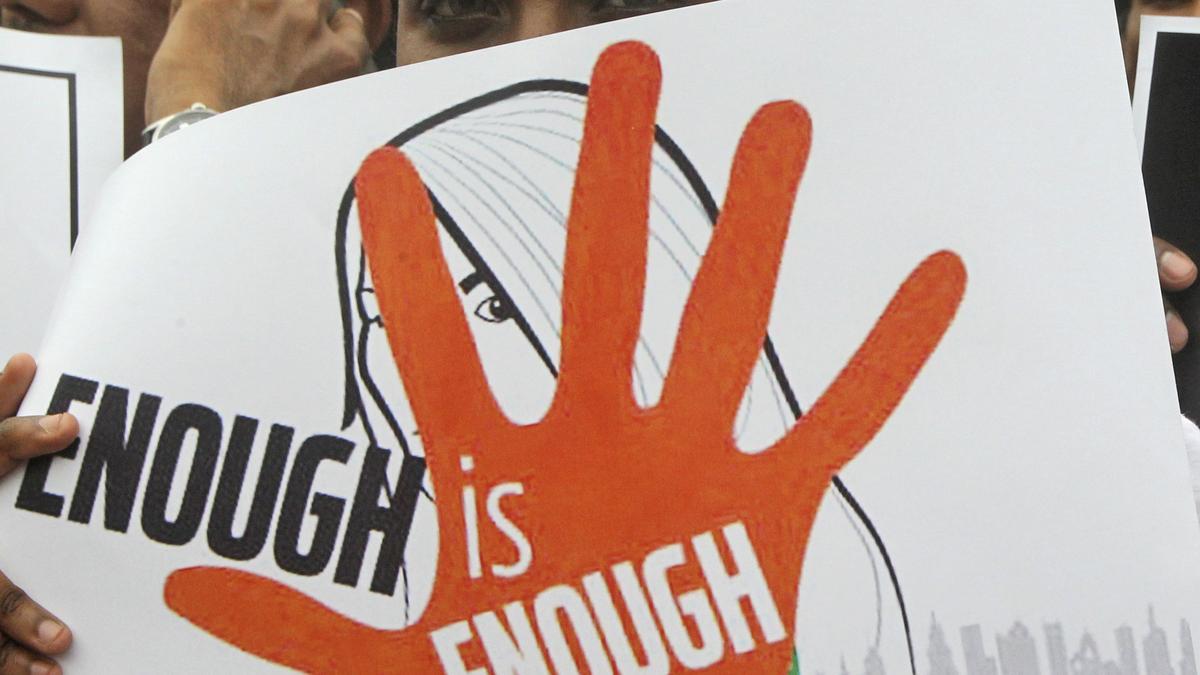
- 19 Sep 2024
In News:
Fast-track special courts (FTSCs) are much more efficient than other courts in handling rape cases and those related to the Protection of Children from Sexual Offences (POCSO) Act, a report released by the India Child Protection.
Key Details:
West Bengal's Performance
- West Bengal recorded less than a 2% disposal rate for rape and POCSO cases, the lowest in India.
- Only five out of 123 earmarked FTSCs are currently functioning in the state.
Overview of the India Child Protection (ICP)
- Established in 2005, the ICP is dedicated to combatting child sexual abuse and related crimes, including:
- Child trafficking
- Exploitation of children in the digital space
- Child marriage
Efficiency of FTSCs
- The ICP report titled "Fast Tracking Justice" highlighted that FTSCs disposed of 83% of cases in 2022, compared to 10% by conventional courts.
- As of August 2023, 755 out of 1,023 earmarked FTSCs were operational.
- Among these, 410 FTSCs are exclusively for POCSO cases.
Historical Context
- The FTSC scheme was launched by the Centre in October 2019, following a Supreme Court directive for ensuring the swift disposal of cases, related to rape and those coming under the Protection of Children from Sexual Offences (POCSO) Act.
- It is a centrally sponsored scheme.
- Implemented by the Department of Justice, Ministry of Law and Justice.
Case Disposal Statistics
- FTSCs have disposed of 52% of the 4,16,638 rape and POCSO cases since the scheme's inception.
- Disposal rates improved from 83% in 2022 to 94% in 2023.
State-wise Disposal Rates
- Top Performing States:
- Maharashtra: 79.5%
- Punjab: 71.3%
- Kerala (Southern India): 69.5%
- Karnataka: 62.2%
- Tamil Nadu: 58.4%
- Lowest Performing States:
- West Bengal: 1.6%
- Jammu and Kashmir: 25%
- Meghalaya: 26.6%
- Delhi: 28.3%
Note: No data was available for Arunachal Pradesh, Ladakh, and Sikkim.
Need for Additional FTSCs
- The ICP report states that India needs at least 1,000 more FTSCs to manage the backlog effectively.
- The backlog of pending cases rose from 2,81,049 in 2020 to 4,17,673 by the end of 2022.
Advocacy for Reform
- Bhuwan Ribhu, a child rights activist, emphasized the urgent need for FTSCs to ensure justice for victims:
- Investment in the safety and security of women and children is crucial.
- All pending cases should be resolved within the next three years.
- Rehabilitation and compensation for victims should be prioritized.
- Time-bound policies for case disposal across all courts are necessary.
Funding and Resource Utilization
- The ICP report recommends optimizing the Nirbhaya Fund, created after the 2012 Delhi gang rape, to support additional FTSCs.
- There is currently ?1,700 crore unutilized, while the requirement for operationalizing new FTSCs is ?1,302 crore.
India-China Disengagement Along the LAC
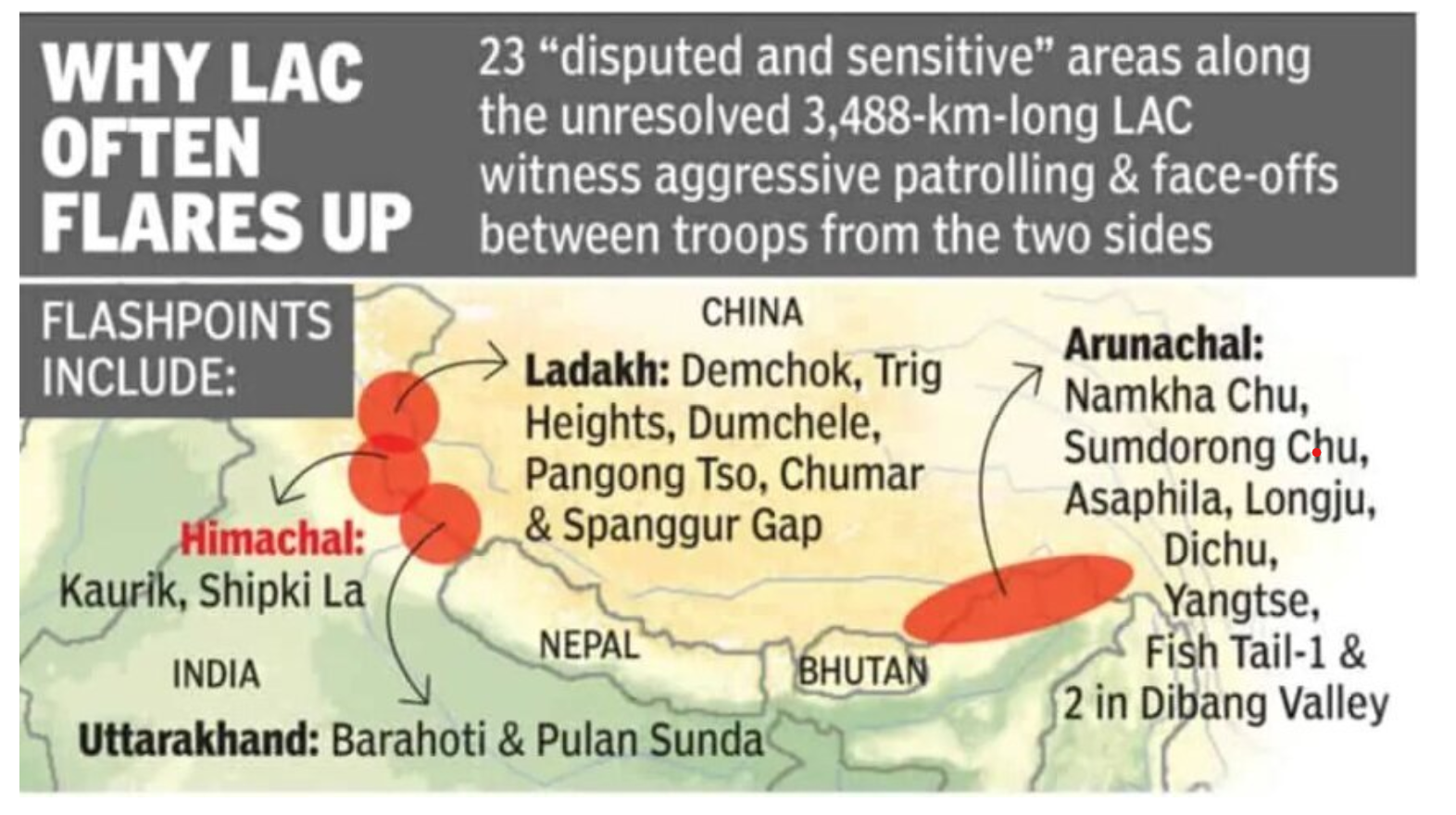
- 18 Sep 2024
Overview of Disengagement Progress
Recently, India’s External Affairs Minister announced that about 75% of the “disengagement problems” with China along the Line of Actual Control (LAC) in Ladakh have been “sorted out.” However, notable areas such as Demchok and the Depsang plains have seen no progress toward resolution over the past two years.
Recent Developments on India-China Disengagement
Verified Disengagement
India and China have mutually agreed to and verified disengagement from five friction points, including:
- Galwan Valley
- Pangong Tso
- Gogra-Hot Springs
Despite this, issues in Demchok and Depsang remain unresolved.
Diplomatic Efforts
Recent high-level diplomatic interactions have facilitated the disengagement along the LAC. Key meetings include:
- India’s National Security Advisor Ajit Doval meeting Chinese Foreign Minister Wang Yi at the BRICS NSAs meeting in St Petersburg, Russia.
- Anticipation for further disengagement is linked to the upcoming BRICS Summit in October in Kazan, Russia, where leaders from both nations are expected to meet.
Significance of Disengagement
The 31st meeting of the Working Mechanism for Consultation & Coordination on India-China Border Affairs (WMCC) was described as “frank, constructive, and forward-looking.” Participants urged both parties to “narrow down the differences” and “find early resolution of the outstanding issues.” The phrase "narrow down the differences" marks a hopeful shift in the dialogue surrounding the border standoff.
Strategic Importance of Depsang Plains and Demchok
Depsang Plains
The Depsang Plains hold strategic significance due to the following reasons:
- The People’s Liberation Army (PLA)’s control threatens India’s position over the Siachen Glacier, potentially encircling the Indian Army between China and Pakistan.
- A coordinated attack from both China and Pakistan would leave India’s military position on the Siachen Glacier vulnerable.
- The Indian Army identifies this region as particularly susceptible to mechanized warfare due to its flat terrain, which also offers direct access to Aksai Chin.
Demchok
Demchok is crucial for several reasons:
- It facilitates effective surveillance of Chinese movements and activities in the Aksai Chin region.
- It supports essential road and communication links that enable rapid military mobilization and logistical support.
Key Areas in the India-China Standoff
Pangong Lake Region
- This area frequently sees patrols from both India and China intersecting.
- The north bank of the lake is divided into eight "fingers," with India claiming territory up to Finger 8 and China disputing it down to Finger 4.
Demchok Region
- Recent reports indicated increased Chinese activity and heavy equipment movement.
Galwan River Basin
- Satellite imagery revealed Chinese tents near the Galwan River basin, suggesting incursions into traditionally held Indian territories.
Gogra Post
- A Chinese military buildup near the Gogra post has escalated tensions.
Daulat Beg Oldie (DBO)
- Chinese encroachments have been reported in the DBO sector, located on the Indian side.
- The DBO airstrip is critical for winter operations and reinforcements, accessible via the 255 km-long Darbuk-Shyok-DBO road.
Why is T.N.’s education funding on hold?
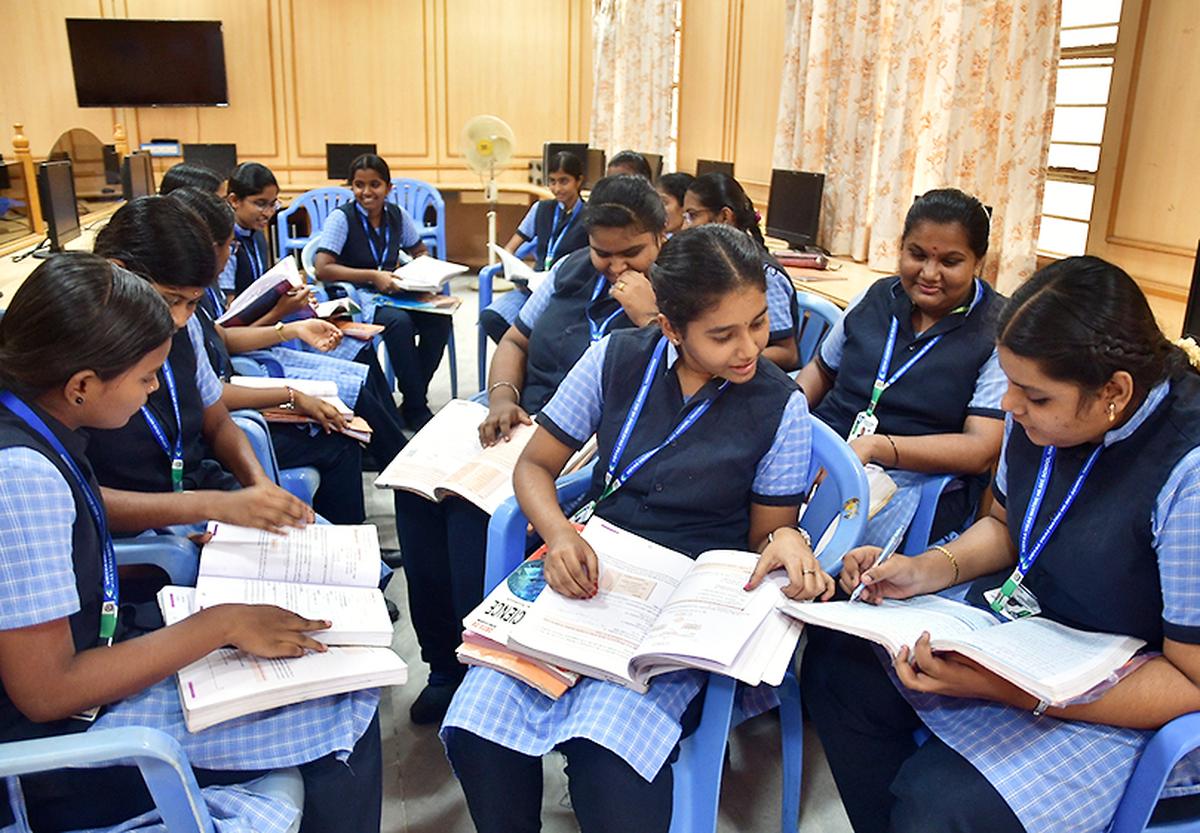
- 17 Sep 2024
In News:
Tamil Nadu is yet to receive this year’s funds from the Union government under the flagship education scheme Samagra Shiksha. According to the State government, the Centre has linked these funds to the complete implementation of the National Education Policy (NEP) 2020, which includes provisions that the State has opposed, including the contentious three-language formula.
What is Samagra Shiksha and why has Tamil Nadu not gotten funds under it?
- Samagra Shiksha is an integrated Centrally-sponsored scheme for school education from nursery till Class 12, with components for teacher training and salaries, special education, digital education, school infrastructure, administrative reform, vocational and sports education, with grants for textbooks, uniforms, and libraries, among others.
- The scheme’s estimated outlay between 2021 and 2026 is ?2.94 lakh crore, with the Centre and States contributing funds in a 60:40 ratio. For 2024-25, Tamil Nadu’s allocation under the scheme amounts to ?3,586 crore of which the Central share is ?2,152 crore, with a first quarterly instalment of ?573 crore, which has not yet arrived halfway through the financial year.
- In a letter to Prime Minister Narendra Modi last month, Tamil Nadu Chief Minister M.K. Stalin accused the Centre of imposing a prerequisite for the fund’s disbursal, namely, the signing of a Memorandum of Understanding (MoU) for another Centrally-sponsored education scheme called PM Schools for Rising India (PM Shri).
- This scheme, being run from 2022-2027, aims to create 14,500 model schools across the country to showcase the implementation of NEP 2020, and has a much smaller project cost of ?27,360 crore. The Centre has sent at least 10 letters to Tamil Nadu from September 2022, asking the State to sign the MoU, which included an agreement to fully implement the NEP.
In March 2024, Tamil Nadu committed to signing the PM Shri MoU due to its link to delayed funding for the larger Samagra Shiksha scheme. However, after signing a modified MoU in July that excluded NEP implementation, the Centre found it unacceptable. In August, Chief Minister M.K. Stalin noted that states signing the MoU received funds, accusing the Centre of “denying funds to the best-performing States” for not complying with NEP. The Union Education Ministry labeled these claims as misleading, but Tamil Nadu has not received Samagra Shiksha funds due to the incomplete MoU.
What is Tamil Nadu’s problem with the NEP 2020?
Tamil Nadu Education Minister highlighted the state's objections to specific NEP elements, such as the three-language formula and curriculum changes. He stated that Tamil Nadu is already implementing many acceptable aspects of the NEP through its own initiatives and warned that linking Samagra Shiksha funds to full NEP compliance infringes on the state's constitutional autonomy in education.
Tamil Nadu’s draft State Education Policy (SEP), submitted in July, clearly indicates that the State wants to stick to the 5+3+2+2 curricular formula, rather than the NEP, which includes the pre-school years. The SEP also proposes five years as the age of entry to Class 1, as against six years in the NEP. The State wants undergraduate college admissions to be based on Class 11 and 12 marks, rather than a common entrance test as proposed by the NEP. The biggest hurdle, however, is the NEP’s three-language formula.
Why does Tamil Nadu oppose the three-language formula?
The NEP 2020 recommends using the mother tongue or local language as the medium of instruction until Class 5, with all students learning at least three languages, including two native to India. This three-language formula has been part of every NEP since 1968 but has faced long-standing opposition in Tamil Nadu, rooted in historical movements against mandatory Hindi.
Tamil Nadu follows a two-language policy, requiring students to study Tamil and English, while allowing the choice of an optional third language, such as Hindi. Education Minister Anbil Mahesh emphasized Tamil's importance in the state's identity alongside English proficiency.
While the NEP offers flexibility and states that no language will be imposed on any state, allowing students to choose Tamil as a third language, all major political parties in Tamil Nadu have rejected the three-language formula. In response to concerns about opposing mother-tongue education, Mahesh affirmed the state prioritizes inclusive learning with Tamil at its core.
International Day of Democracy
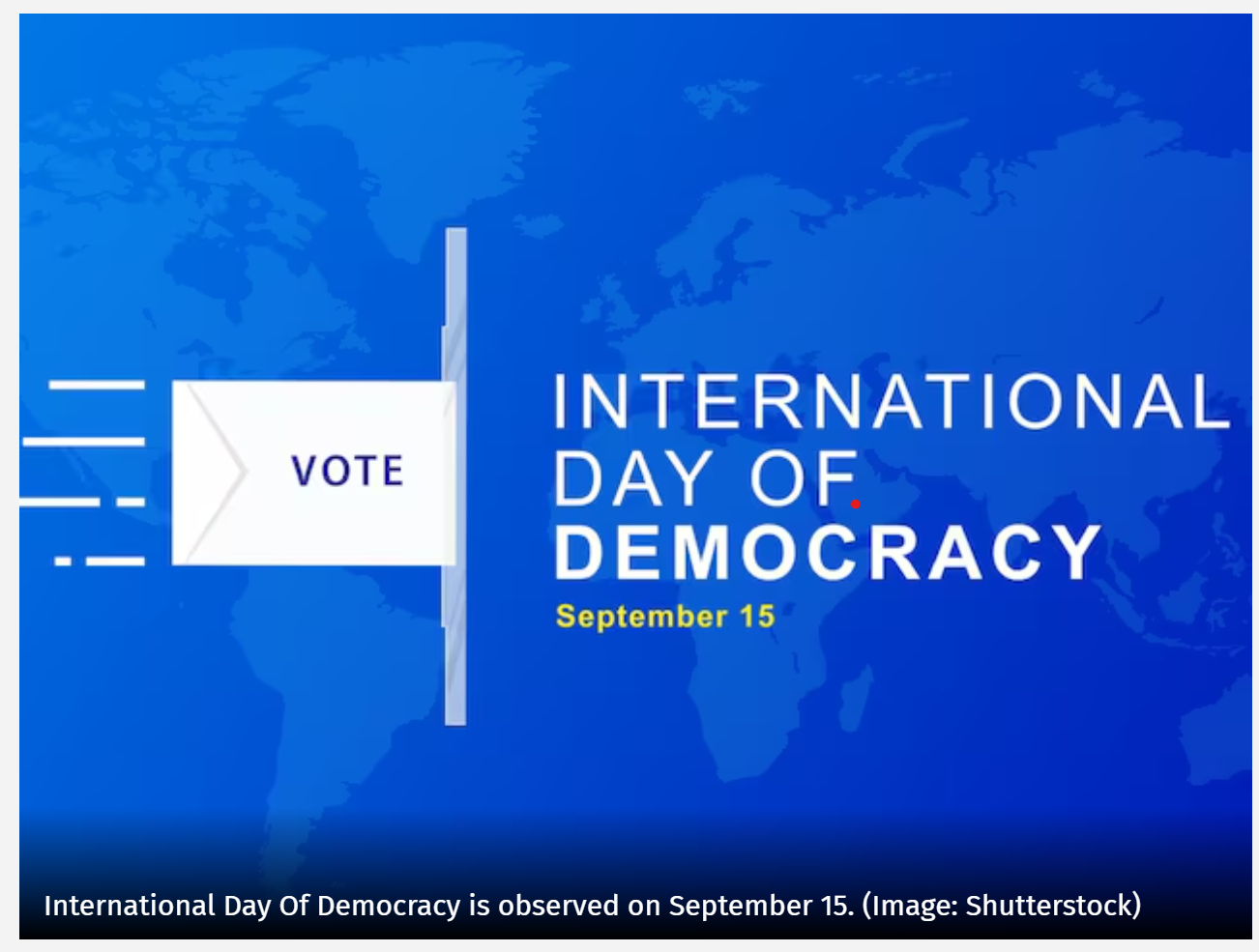
- 16 Sep 2024
In News:
Karnataka marked the 'International Day of Democracy' by forming a 'historic' 2,500-km-long human chain as a symbol of equality, unity, fraternity, and participative governance. The massive human chain, which according to the Karnataka government will be the "world's longest", is being formed across the state from Bidar to Chamarajanagar, covering all 31 districts.
Key Highlights:
- Democracy Day is an annual celebration observed on September 15.
- The United Nations General Assembly established this day in 2007 to emphasise the global significance of democracy. It serves as a reminder that democracy is not merely a fixed condition, but an ongoing pursuit. It calls for active engagement from international organizations, nation-states, civil society and people to pursue the democratic idea.
International Day of Democracy History
- The International Day of Democracy was accredited by the United Nations General Assembly (UNGA) on November 8, 2007, by passing a resolution entitled “Support by United Nations system of efforts of governments to promote and consolidate new or restored democracies.”
- September 15 was chosen to coincide with the anniversary of the Inter-Parliamentary Union’s Universal Declaration on Democracy, which was adopted in Geneva on September 15, 1997.
- This declaration outlines the tenets of democracy proclaiming that democracy is “a system of government based on the freely expressed will of the people to determine their own political, economic, social and cultural systems and their full participation, through free and fair periodic elections, in the composition of their representative government.”
- After the Universal Declaration on Democracy, Qatar spearheaded the campaign to observe an International Day of Democracy at the United Nations.
- The first-ever International Day of Democracy was held in 2008.
International Day of Democracy Significance
- The International Day of Democracy evaluates global democracy, emphasising that it requires commitment and engagement from the international community, the national state governments, civil societies and individuals.
- The day also reminds the nations of the need to uphold the principles of democracy such as the freedom of speech enshrined in Article 19 of the United Nations Universal Declaration of Human Rights.
National Florence Nightingale Awards 2024
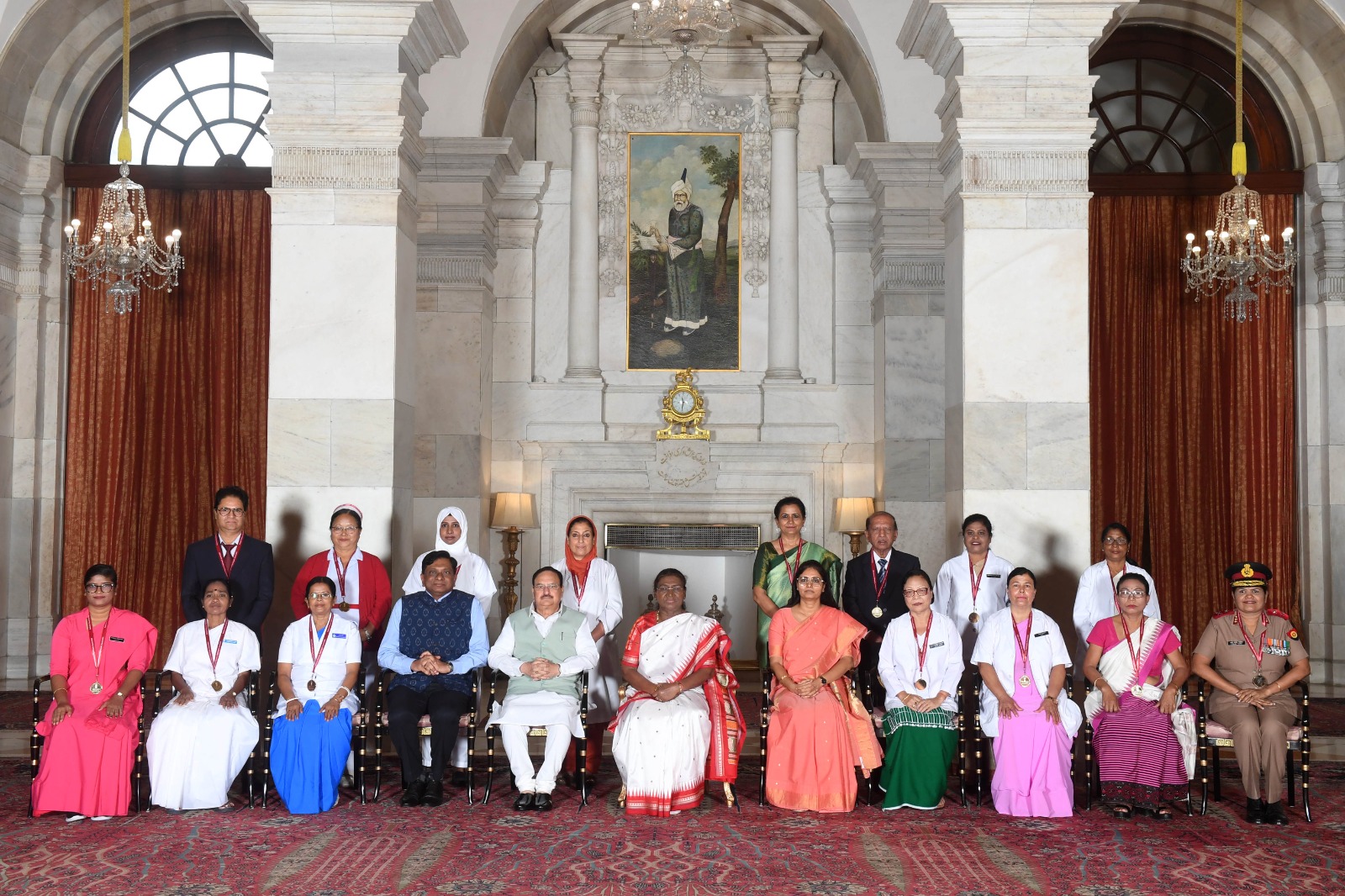
- 15 Sep 2024
In News:
President Droupadi Murmu honored 15 exemplary nursing professionals with the National Florence Nightingale Awards 2024, recognizing their extraordinary healthcare service.
Key Details:
- The National Florence Nightingale Award was instituted by the Ministry of Health and Family Welfare, Government of India in the year 1973 as a mark of recognition for the meritorious services rendered by the nurses and nursing professionals to the society.
- A total of 15 awards are given in the category of registered auxiliary nurses and midwife, registered nurses and midwife and registered lady visitor, the statement said.
- The award is given to outstanding nursing personnel employed in central, states and Union territories and voluntary organisations.
- The nurse in her/his regular job in the hospital or community settings, educational or administrative setting is eligible for the national award.
- Each award consists of a Certificate of Merit, a cash award of ? 1,00,000 and a medal.
A Legacy of Florence Nightingale
- The National Florence Nightingale Awards, are named in honor of Florence Nightingale, the founder of modern nursing.
- Nightingale’s pioneering work during the Crimean War laid the foundation for professional nursing, and her relentless efforts in promoting hygiene and compassionate care revolutionized healthcare practices worldwide.
- In her honor, International Nurses Day is celebrated every year on May 12, her birthday.
Operation Sadbhav
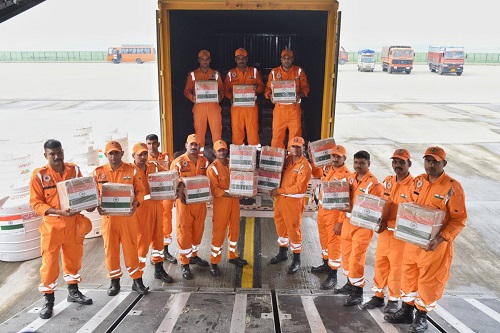
- 15 Sep 2024
In News:
India has launched Operation Sadbhav to deliver crucial humanitarian aid to Myanmar, Laos, and Vietnam, all of which have been devastated by Typhoon Yagi. This powerful storm, the most severe in Asia this year, has led to extensive flooding and widespread destruction across the affected countries.
Relief Efforts:
In response to the crisis, India has mobilized a significant amount of aid. The Indian naval ship INS Satpura has transported 10 tonnes of relief supplies, including dry rations, clothing, and medicines, to Myanmar. Concurrently, the Indian Air Force has dispatched a military transport aircraft with 35 tonnes of aid to Vietnam and an additional 10 tonnes to Laos. The aid includes essential items such as generators, water purification systems, hygiene kits, mosquito nets, blankets, and sleeping bags, which are crucial for addressing immediate needs during this emergency.
India's Proactive Approach:
Operation Sadbhav highlights India's proactive approach to humanitarian assistance and disaster relief, emphasizing its role as a leading responder in the region. This initiative reflects India's commitment to providing support to its neighboring countries in times of crisis and aligns with its broader 'Act East Policy,' which aims to strengthen relations with ASEAN member states through practical assistance and cooperation.
Strategic Importance:
The operation also underscores India's strategic goals of enhancing regional stability and reinforcing its position as a reliable partner in disaster management. By providing timely aid, India demonstrates its dedication to supporting regional stability and contributing to international humanitarian efforts.
Global Recognition and Cooperation:
India's response to Typhoon Yagi has received international acknowledgment for its effectiveness and promptness. The coordination of these relief efforts highlights the importance of global solidarity in addressing humanitarian crises and building resilience in disaster-affected regions.
Conclusion:
Operation Sadbhav is a clear demonstration of India's commitment to timely and substantial humanitarian assistance. It not only showcases India's proactive diplomacy but also strengthens its ties with ASEAN nations through meaningful cooperation in times of adversity. The ongoing relief efforts are a testament to India's role as a responsible global stakeholder in disaster response and recovery.
Black Coat Syndrome
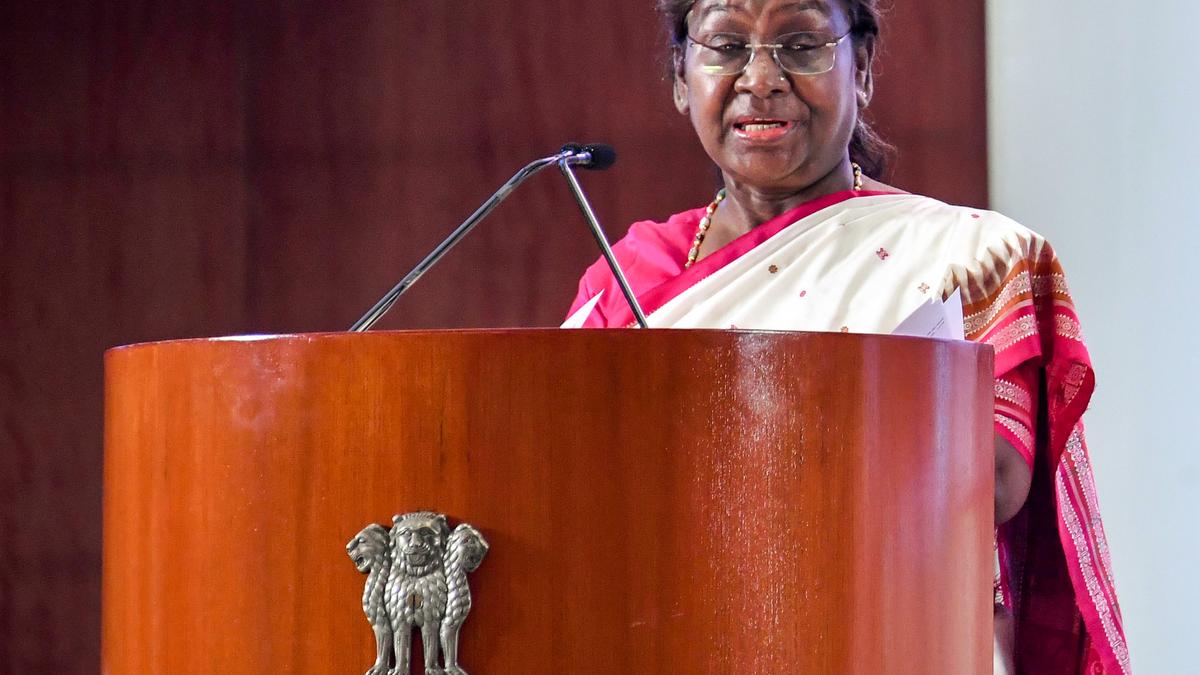
- 05 Sep 2024
In News:
In her recent speech at the National Conference of District Judiciary, President Droupadi Murmu introduced the concept of 'black coat syndrome' to address the persistent issue of case delays in Indian courts. This term is intended to reflect the anxiety and reluctance that people experience when dealing with the judicial system, similar to the 'white coat syndrome' seen in medical settings.
Current Challenges in India's Judicial System
- Case Pendency: As of October 2023, there are over five crore cases pending across various levels of the judiciary in India. The current number of judges—20,580—falls short of effectively managing this caseload.
- Infrastructure Deficiencies: Many courts lack essential infrastructure and modern technology. For example, as of September 2023, 19.7% of district courts did not have separate toilets for women.
- Judicial Vacancies: There are notable vacancies in the judiciary. High courts have 347 unfilled positions out of a total of 1,114 sanctioned posts. Similarly, 5,300 out of 25,081 district judge positions are vacant.
- Gender Representation: The Supreme Court has three female judges, making up 9.3% of its bench. High courts have 103 female judges, representing 13.42%, while the district judiciary has a more balanced representation with 36.33% female judges.
Ongoing Initiatives to Address Judicial Challenges
- Technological Advancements:
- e-SCR (Electronic Supreme Court Reports): Provides digital access to Supreme Court judgments.
- Virtual Court System: Facilitates court proceedings through videoconferencing.
- eCourts Portal: Serves as a comprehensive platform for interaction among litigants, advocates, government bodies, and the public.
- National Judicial Data Grid (NJDG): Makes case statistics available at various levels for public and research use.
- Legal Reforms and Alternative Dispute Resolution (ADR):
- National Mission for Justice Delivery and Legal Reforms (2011): Focuses on improving justice access by tackling delays and arrears.
- ADR Methods: Includes Lok Adalats, Gram Nyayalayas, and Online Dispute Resolution to expedite justice.
- Commercial Courts Act 2015: Enforces pre-institution mediation for commercial disputes.
- Fast Track Courts: Designed to speed up cases involving serious crimes, senior citizens, women, and children.
Strategies for Future Improvement
- Increasing Court Efficiency: The Chief Justice of India has stressed the need for courts to function beyond their current capacity of 71% to better align case disposal with new case inflows.
- Filling Judicial Positions: With 28% of district court positions vacant, a regularized recruitment schedule is suggested to address these gaps. Additionally, integrating judicial recruitment on a national scale is recommended to reduce regional biases.
- Enhancing Case Management: Establish District-Level Case Management Committees to better manage cases by reconstructing records and identifying priority cases. Encouraging pre-litigation dispute resolution can also help manage the case backlog.
- Adjusting Judicial Vacations: The 2003 Malimath Committee report proposed reducing vacation periods to help address the backlog of cases.
- Bridging Judiciary Gaps: Addressing the disparity between district courts and high courts is crucial to create a more cohesive and unified judicial system.
India-France Bilateral Naval Exercise VARUNA

- 07 Sep 2024
In News:
The 22nd edition of the India-France bilateral naval exercise, VARUNA, took place in the Mediterranean Sea from September 2 to 4, 2024. This exercise highlights the strong maritime partnership between the Indian Navy and the French Navy, showcasing their commitment to enhancing interoperability and operational effectiveness.
Key Highlights:
- Participating Vessels and Aircraft:
- Indian Navy:
- INS Tabar: A frontline stealth frigate commanded by Captain MR Harish.
- Ship-borne Helicopter: Provided air support during the exercises.
- LRMR Aircraft P-8I: An advanced long-range maritime reconnaissance aircraft.
- French Navy:
- FS Provence: A French naval ship participating in the exercise.
- Submarine Suffren: A French attack submarine.
- Aircraft F-20: Providing air support.
- Atlantique 2: A French maritime patrol aircraft.
- Fighters MB339: Multi-role fighter aircraft.
- Helicopters NH90 and Dauphin: Providing additional aerial capabilities.
- Indian Navy:
- Exercise Activities:
- Tactical Maneuvers: Advanced maneuvers showcasing the operational capabilities of both navies.
- Anti-Submarine Warfare: Exercises designed to enhance capabilities in detecting and countering submarines.
- FLYEX (Flight Exercises): Coordinated air operations involving various aircraft.
- Air Defence Exercise: Training in defending against aerial threats.
- Live Weapon Firings: Demonstrations of weapon systems in action.
- PHOTO-EX (Photographic Exercise): Exercises designed for documenting and assessing naval operations.
- Steam Past: A ceremonial maneuver showcasing the participating ships.
- Significance of the Exercise:
- Evolution of VARUNA: Since its inception in 2001, VARUNA has become a key component of the India-France naval relationship. The exercise has evolved to improve interoperability and share best practices between the two navies.
- Strategic Importance: Conducting the exercise in the Mediterranean Sea reflects the Indian Navy's capability and commitment to operate far beyond the Indian Ocean Region (IOR). It underscores the strategic depth and outreach of the Indian Navy.
- Enhanced Interoperability: VARUNA demonstrates the mutual commitment of India and France to enhancing naval collaboration and operational effectiveness through joint exercises and shared experiences.
- Future Outlook:
- Commitment to Partnerships: The Indian Navy continues to prioritize building strong partnerships with like-minded navies worldwide. The VARUNA exercise is a testament to this ongoing commitment and the broader strategic goals of both India and France in strengthening maritime security and cooperation.
This bilateral exercise not only enhances the operational capabilities of both navies but also reinforces the strategic partnership between India and France in the maritime domain.
India-Maldives Defence Talks
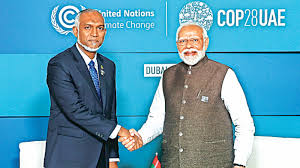
- 07 Sep 2024
In News:
- India and the Maldives held their first defence talks since India withdrew its military personnel early this year.
Significance of Talks:
- The dialogue is notable given recent tensions in bilateral relations. Relations soured after President Mohamed Muizzu's election on an "India Out" platform, leading to the withdrawal of Indian troops. The last defence cooperation dialogue was held in March 2023 under President Ibrahim Solih.
Discussion Topics:
-
- Expediting ongoing defence cooperation projects.
- Planning forthcoming bilateral military exercises.
- Enhancing high-level exchanges and capability development.
Context of Tensions:
-
- Mohamed Muizzu, who took office in November 2023, had called for the removal of Indian military personnel, a significant shift from the previous administration’s stance.
- India agreed to withdraw 80 military personnel between March and May 2024. Indian technical personnel now operate key equipment like helicopters and a Dornier aircraft in the Maldives.
Recent Developments:
-
- Maldives Foreign Minister Moosa Zameer visited India in May.
- President Muizzu attended PM Narendra Modi’s swearing-in ceremony in June.
- In August, Indian External Affairs Minister S. Jaishankar visited the Maldives to reaffirm bilateral ties.
Historical Defence Cooperation:
-
- India gifted a Dornier aircraft to the Maldives in 2020 and a patrol vessel in 2019.
- India provided a coastal radar system last year and laid the foundation for the 'Ekatha Harbour' project, enhancing Maldivian Coast Guard capabilities.
Ongoing Projects:
-
- Greater Male Connectivity Project (GMCP) - a $500 million initiative financed by India.
- Building a new Coast Guard base at Uthuru Thilafalhu (UTF) atoll.
- India’s grant for High Impact Community Development Projects (HICDPs).
Strategic Importance:
-
- For Maldives: India is a key security partner and crisis responder, with historical assistance during emergencies (Operation Neer, Vaccine Maitri). Maldives seeks to restore Indian tourist numbers, vital for its economy.
- For India: The Maldives is crucial to India's Neighbourhood First Policy and Vision SAGAR. Its strategic location between major Indian Ocean chokepoints makes it a vital partner for maritime security and countering China's influence.
Recent Changes:
-
- The Muizzu government decided not to renew a 2019 MoU for hydrographic surveying with India, ending joint hydrographic surveys conducted under the pact.
Travel and Trade:
-
- Both countries benefit from an open skies arrangement and visa-free access for tourism, medical, and business purposes
India-Middle East-Europe Economic Corridor (IMEC)
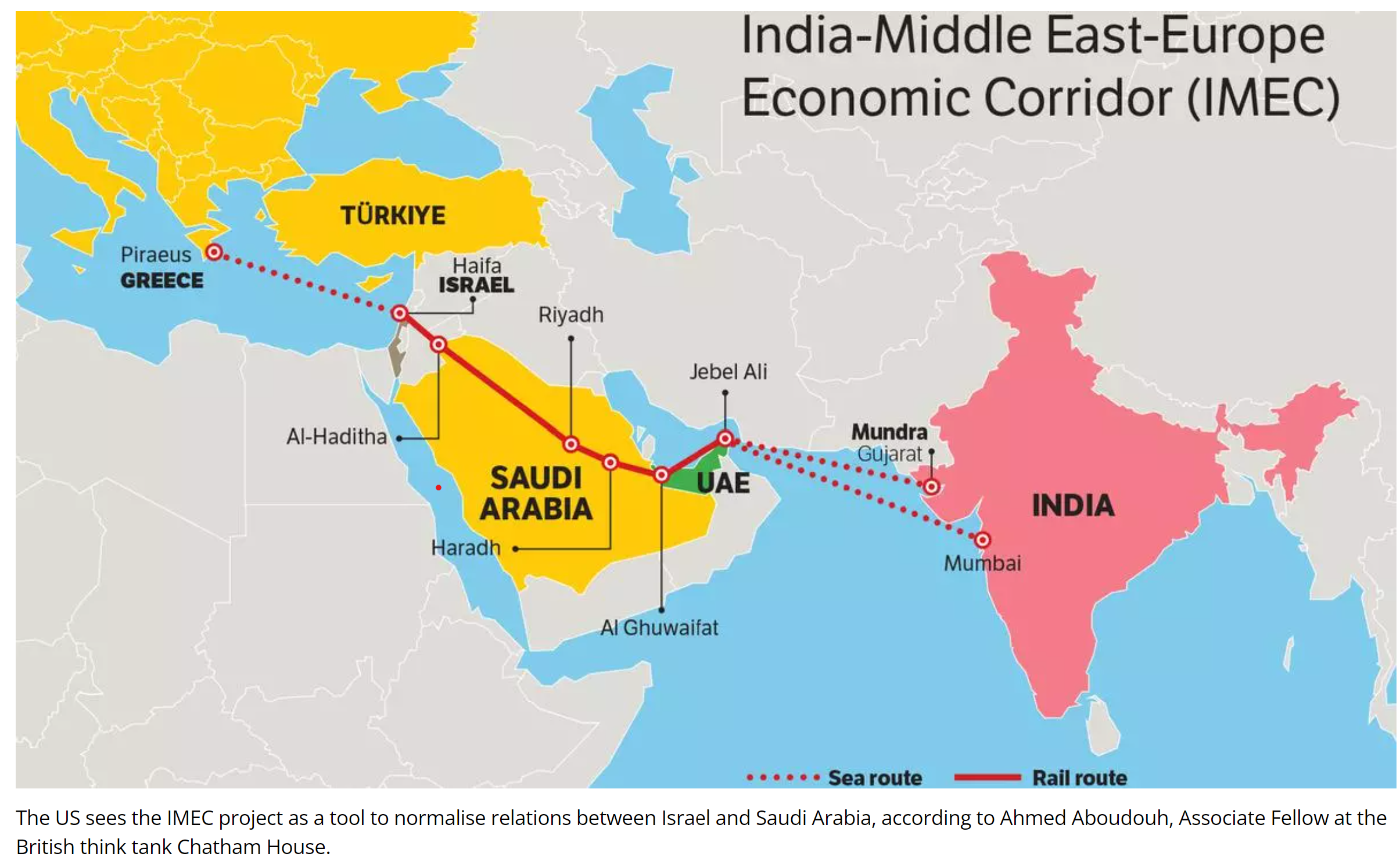
- 07 Sep 2024
In News:
IMEC is an important initiative that can add to India's maritime security and faster movement of goods between Europe and Asia, said Union Minister of Commerce & Industry at the Confederation of Indian Industry (CII) India-Mediterranean Business Conclave 2024 in New Delhi.
Key Details:
- Corridors:
- East Corridor: Connects India to the Gulf.
- Northern Corridor: Links the Gulf to Europe.
- Components:
- Railroad: Provides a reliable and cost-effective cross-border ship-to-rail transit network.
- Ship-to-Rail Networks: Integrates road, sea, and rail transport routes.
- Road Transport: Complements the overall transport infrastructure.
- Expected Benefits:
- Increased Efficiency: Enhances transit efficiency and reduces costs.
- Economic Unity: Promotes economic integration and job creation.
- Environmental Impact: Lowers greenhouse gas emissions.
- Transformative Integration: Connects Asia, Europe, and the Middle East.
- Additional Features:
- Infrastructure: Includes laying cables for electricity and digital connectivity, and pipes for clean hydrogen export.
- Implementation:
- MoU Commitments: Participants will collaboratively address technical design, financing, legal, and regulatory aspects.
- Action Plan: A meeting is planned within 60 days to develop an action plan with specific timetables.
Geoeconomic Perspective
- Economic Integration and Interdependence:
- Prosperity Through Integration: IMEC aims to foster trade and investment among India, the Middle East, and Europe, potentially leading to mutual prosperity and regional stability.
- Building Bridges: Aligns with the liberal international order by promoting economic interdependence to reduce tensions and create shared interests.
- Support from Major Powers: Backed by the US, Europe, and India, signaling a strong commitment to economic ties and regional stability.
- Economic Potential:
- Infrastructure and Trade Routes: Enhances infrastructure and trade routes, boosting economic activity, trade volumes, and investment opportunities.
- Regional Development: Promotes job creation and development in economically disadvantaged areas along the corridor.
Geopolitical Perspective
- Strategic Rivalry with China:
- Countering the BRI: IMEC is seen as a strategic counterbalance to China's Belt and Road Initiative (BRI), offering an alternative aligned with US, European, and Indian interests.
- Regional Influence: Aims to limit China’s influence in the Middle East and South Asia by establishing a competing corridor.
- Geopolitical Alliances:
- Aligning Interests: Involves strategic partnerships among the US, Europe, and India, reflecting concerns about China’s global strategy and shifting power dynamics.
- Rivalry and Competition: The IMEC could be viewed as a global positioning move, responding to China’s growing influence and securing strategic interests.
Reasons for Joining the IMEC
- Economic Enhancement:
- Boosts Indo-Gulf Relations: Enhances trade and economic ties with the Arab Gulf, addressing infrastructure gaps.
- Regional Connectivity: Links India with key partners like Israel and Jordan, boosting economic opportunities.
- Strategic Trade Routes:
- Alternative Routes: Complements existing routes like Chabahar Port and INSTC, connecting India to southern Eurasia.
- Bypassing Choke Points: Offers a shorter route to Eastern Mediterranean and Western Europe, avoiding strategic choke points.
- Energy and Trade Opportunities:
- Access to Resources: Provides potential access to Eastern Mediterranean gas fields.
- Trade Bloc Connectivity: Links India with the EU and GCC, opening up growth opportunities.
- Geopolitical Aspirations:
- Global Power Ambitions: Supports India’s goal to enhance global influence and integrate with eastern and western neighbors.
- Economic Growth: Leverages economic integration to support development and influence.
- Infrastructure Development:
- Economic Integration: Facilitates infrastructure creation for increased trade volumes and regional stability.
Centre gives clearance for ‘Mission Mausam’
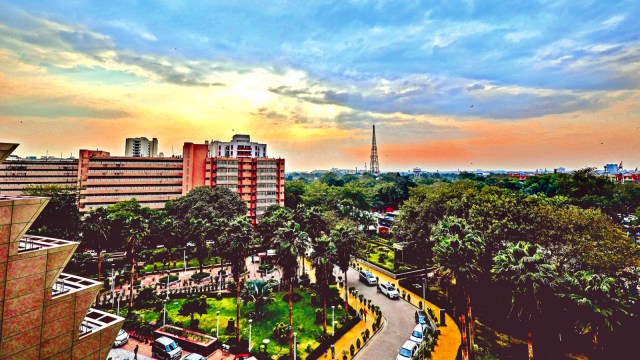
- 13 Sep 2024
The Union Cabinet approved 'Mission Mausam,' a groundbreaking initiative with an investment of ?2,000 crore over the next two years. The mission, spearheaded by the Ministry of Earth Sciences (MoES), aims to significantly advance India's capabilities in atmospheric sciences and climate resilience.
Objectives and Key Focus Areas
Mission Mausam is designed to improve the accuracy and effectiveness of weather forecasting and climate management through several critical components:
- Advanced Technology Deployment: The mission will focus on deploying next-generation radars and satellite systems equipped with advanced sensors. These technologies are crucial for enhancing weather surveillance and prediction accuracy.
- Research and Development: A key objective of Mission Mausam is to bolster research and development in atmospheric sciences. This will include the development of enhanced Earth system models and advanced weather forecasting techniques.
- GIS-Based Decision Support System: An automated decision support system based on Geographic Information Systems (GIS) will be developed to facilitate real-time data sharing and improve decision-making processes.
Institutional Framework and Implementation
The Ministry of Earth Sciences will oversee the implementation of Mission Mausam. The following institutions will play central roles in the mission:
- India Meteorological Department (IMD)
- Indian Institute of Tropical Meteorology
- National Centre for Medium-Range Weather Forecasting
Additional support will come from other MoES bodies:
- Indian National Centre for Ocean Information Services
- National Centre for Polar and Ocean Research
- National Institute of Ocean Technology
Sectoral Benefits
Mission Mausam is expected to bring significant improvements across various sectors:
- Agriculture: Enhanced agromet forecasts will aid farmers in optimizing crop management and increasing resilience to climatic variability.
- Disaster Management: Improved monitoring and early warning systems will enhance disaster preparedness and response, potentially reducing loss of life and property damage.
- Defence: Accurate weather forecasting will support strategic planning and operational efficiency within the defence sector.
- Energy and Water Resources: Better weather predictions will lead to more efficient management of energy and water resources.
- Aviation: Safer aviation will be supported by more reliable weather information, reducing risks and improving travel safety.
- Tourism: Sustainable tourism will benefit from accurate weather forecasting, contributing to safer and more enjoyable travel experiences.
Mission Mausam represents a significant investment in India’s ability to manage and mitigate the impacts of climate change and extreme weather events, ultimately aiming to enhance the resilience of communities and support sustainable development.
Delhi Declaration on Civil Aviation
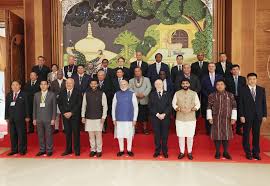
- 13 Sep 2024
In the News:
The Prime Minister has announced the adoption of the Delhi Declaration on Civil Aviation.
Overview:
The Delhi Declaration was unanimously accepted following the conclusion of the 2nd Asia Pacific Ministerial Conference held in New Delhi. This Declaration provides a thorough framework designed to boost regional cooperation, tackle emerging challenges, and promote sustainable growth within the civil aviation sector across the Asia-Pacific region. The conference also marks the 80th anniversary of the International Civil Aviation Organization (ICAO).
Key Announcements:
- Prime Minister Narendra Modi highlighted significant achievements in Indian aviation, noting that women make up 15% of Indian pilots, a figure that surpasses the global average.
- A proposal for establishing an International Buddhist Circuit was introduced to enhance regional tourism and connectivity.
- India plans to build between 350 and 400 new airports by 2047, aiming to increase its global aviation presence.
- A Pacific Small Island Developing States Liaison Office will be created to help smaller nations manage aviation-related issues.
- The ‘Ek Ped Ma Ke Naam’ campaign was launched, with a goal to plant 80,000 trees in honor of ICAO’s 80 years, emphasizing green aviation and sustainability in future initiatives.
Significance of the Delhi Declaration:
- It marks a significant advancement in enhancing regional cooperation in civil aviation within the rapidly growing Asia-Pacific region.
- The framework tackles crucial issues such as sustainability, green aviation, and safety, which are vital for the current aviation industry.
- Initiatives like the International Buddhist Circuit are in line with broader regional objectives to improve connectivity, tourism, and economic development throughout Asia.
- India aims to assert itself as a major global aviation player with its ambitious plan to construct 350-400 airports by 2047, thereby becoming a key contributor to aviation infrastructure development.
Civil Aviation Sector in India:
- India ranks as the third-largest domestic aviation market globally and is projected to become the third-largest overall by 2025.
- The sector is expanding through significant government programs such as the UDAN Scheme, Pradhan Mantri Gati Shakti Plan, and NCAP 2016.
- With 136 operational airports and plans for an additional 100, the government is focused on modernizing infrastructure, improving regional connectivity, and promoting public-private partnerships for airport development.
International Civil Aviation Organization (ICAO):
- Established in 1947 by the Chicago Convention (1944).
- Headquarters: Montreal, Canada.
- Functions:
- Ensures the safety and efficiency of international air transport.
- Sets standards for aviation safety, security, and environmental performance.
- Encourages regional and international agreements to liberalize aviation markets.
- Promotes cooperation and dialogue among its 193 member states.
- Develops legal frameworks for aviation laws and standards.
Strengthening India-UAE Relations
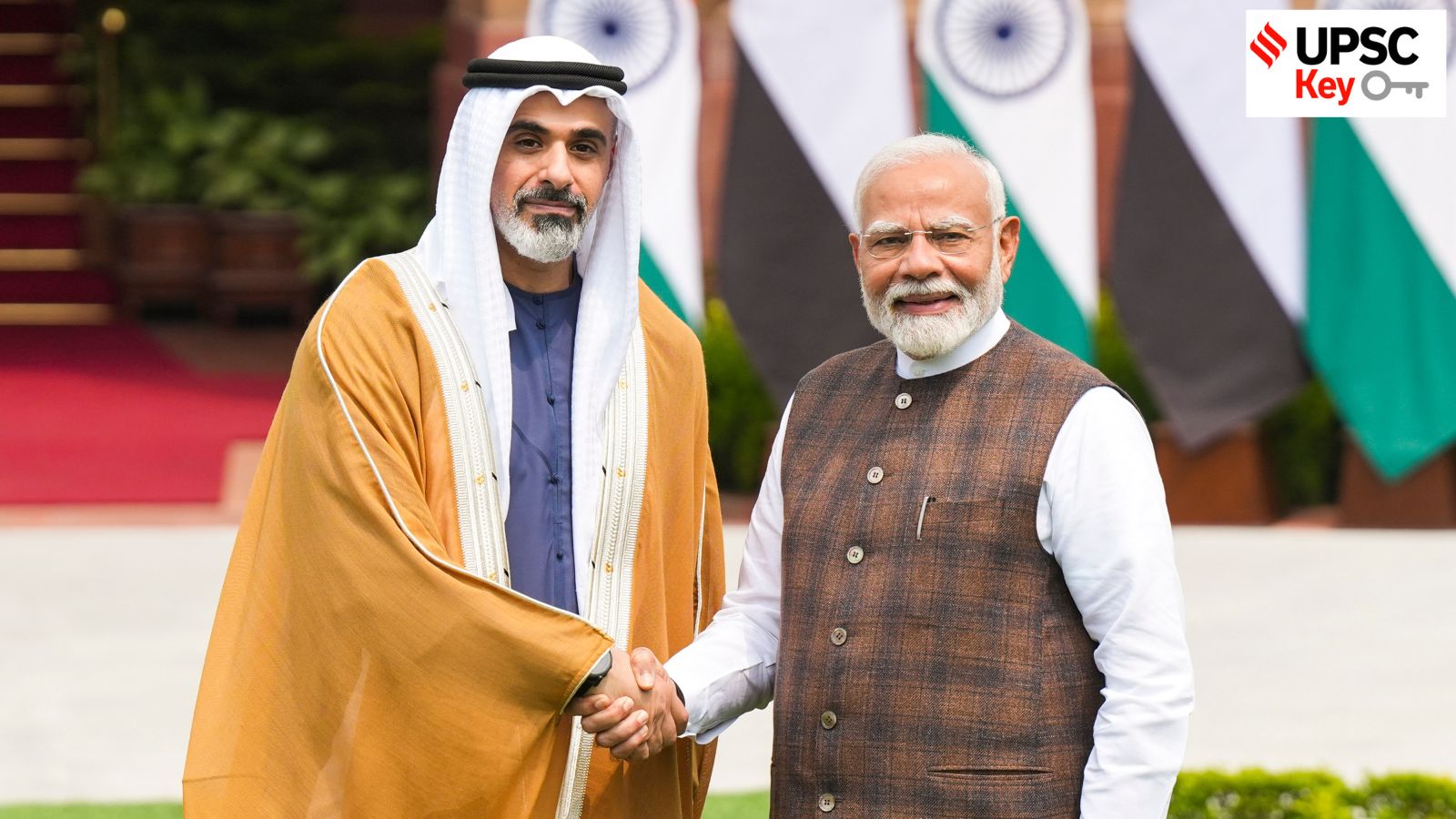
- 11 Sep 2024
The bilateral relationship between India and the UAE has flourished in recent years, marked by deepening strategic ties and multifaceted collaboration. The recent visit of Abu Dhabi's Crown Prince to India highlights the growing importance of this partnership. The UAE is now India's second-largest export destination, third-largest trading partner, and fourth-largest investor. The Comprehensive Economic Partnership Agreement (CEPA), effective from May 2022, has been transformative, boosting total trade by nearly 15% and increasing non-oil trade by 20% in the 2023-24 period.
Significance of the UAE for India
- Economic Gateway: The UAE is a crucial entry point for India into the Middle East and North Africa (MENA) region. As India's third-largest trading partner, bilateral trade reached USD 84.5 billion in FY 2022-23. The CEPA, removing tariffs on 80% of Indian exports to the UAE, has led to a 5.8% increase in non-oil trade early in 2023 and is expected to elevate trade to USD 100 billion by 2030. The UAE’s strategic location and infrastructure make it an ideal hub for re-exporting Indian goods to Africa and Europe.
- Energy Security: The UAE is India's fourth-largest crude oil supplier, with oil imports surging by 81% in January 2024. The partnership extends to renewable energy projects, aligning with India's goal of 500 GW renewable energy capacity by 2030, underscoring the UAE's role in India's energy transition.
- Investment Catalyst: FDI from the UAE to India has increased more than threefold, reaching USD 3.35 billion from USD 1.03 billion in 2021-22. The UAE-India High-Level Joint Task Force on Investments has played a key role, with significant investments like the Abu Dhabi Investment Authority’s Rs 4,966.80 crore in Reliance Retail Ventures Limited.
- Strategic Partner: The UAE has become a vital strategic ally for India in counterterrorism and maritime security. The bilateral naval exercise "Zayed Talwar" in 2021 and India's access to the UAE’s Al Dhafra air base highlight the expanding defense cooperation between the two nations.
- Remittances and Soft Power: The 3.5 million-strong Indian diaspora in the UAE is a major source of remittances and cultural influence. In 2022, India received nearly USD 111 billion in global remittances, with the UAE as a significant contributor. The diaspora also strengthens cultural ties, as evidenced by the BAPS Hindu Temple in Abu Dhabi, symbolizing the UAE’s commitment to religious tolerance.
- Tech and Innovation Hub: The UAE-India partnership is increasingly focused on technology and innovation. The I2U2 group (India, Israel, UAE, USA) aims to enhance cooperation in clean energy and food security. The UAE’s USD 2 billion investment in food parks in India and the UAE-India Artificial Intelligence Bridge, launched in 2018, facilitate joint research and position both countries at the forefront of technological advancement.
Areas of Friction
- Labor Rights: Persistent labor rights issues for Indian workers in the UAE, including passport confiscation and wage theft, remain a concern.
- Geopolitical Tensions: India’s growing ties with Israel and the UAE’s normalization with Israel complicate the geopolitical landscape, potentially entangling India in regional rivalries, especially with Iran. The UAE’s increasing ties with China also add strategic complexity.
- Energy Transition: Both nations’ commitments to net-zero targets—India by 2070 and the UAE by 2050—pose challenges to their traditional hydrocarbon-based relationship.
- Trade Imbalance: Despite growing trade, India’s trade deficit with the UAE stood at USD 16.78 billion in FY 2022-23. While the CEPA aims to address this, diversifying trade beyond hydrocarbons remains a challenge.
- Maritime Security: Coordinating responses to maritime security threats while respecting strategic autonomy is challenging. The UAE’s expanding naval presence and India’s growing maritime footprint require careful coordination.
Enhancing Relations
- Digital Diplomacy: India could use its IT capabilities to develop digital platforms for collaboration, including a real-time trade portal and a joint innovation hub, and expand cross-border digital payments.
- Green Energy Corridor: Proposing an "India-UAE Green Energy Corridor" could align with both nations’ climate goals through joint investments and research in renewable energy.
- Skill Bridge Program: A "Skill Bridge Program" could upskill Indian workers for the UAE job market, focusing on emerging sectors like AI and sustainable technologies.
- StartUp Synergy Scheme: Developing a "StartUp Synergy Scheme" could foster collaboration between Indian and UAE startups through joint incubation programs and market access facilitation.
- Maritime Cooperation Blueprint: Creating a comprehensive "India-UAE Maritime Cooperation Blueprint" could enhance collaboration in maritime security, blue economy initiatives, and port development, including joint patrols and deep-sea ports.
India, UAE ink pact for civil nuclear cooperation
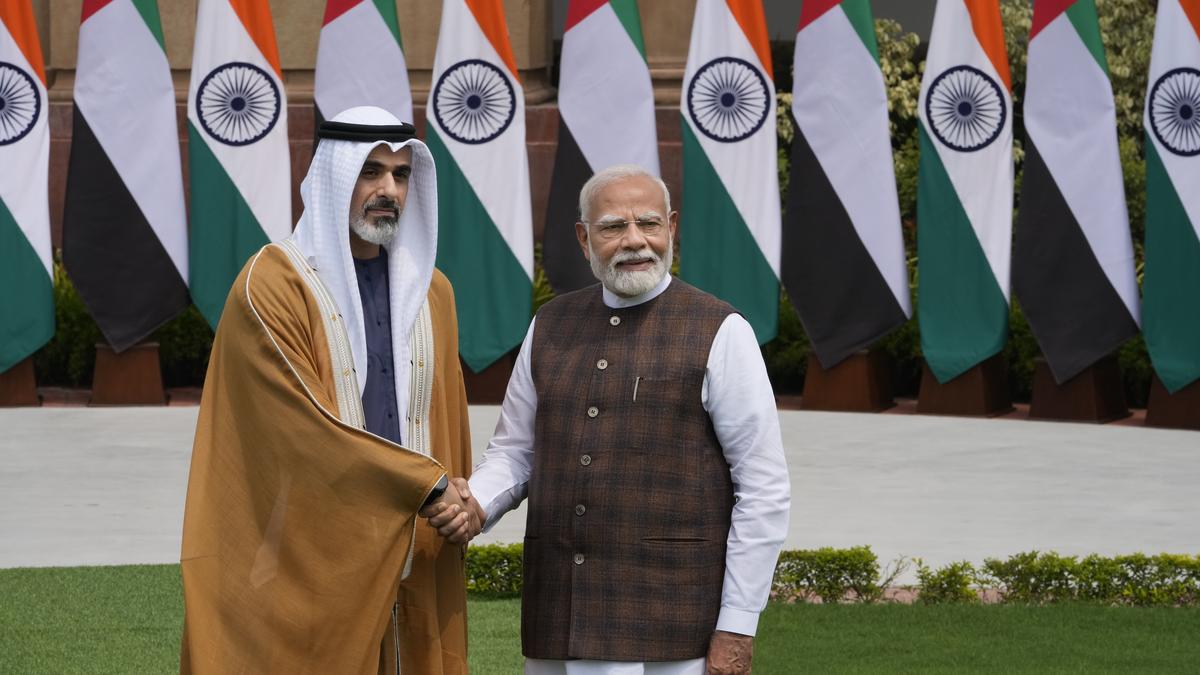
- 10 Sep 2024
In News:
- Recently, India and the United Arab Emirates (UAE) signed a significant Memorandum of Understanding (MoU) for civil nuclear cooperation.
- The agreement, established between the Nuclear Power Corporation of India Limited (NPCIL) and the Emirates Nuclear Energy Company (ENEC)-led Barakah Nuclear Power Plant Operations and Maintenance, was formalized during the visit of Sheikh Khalid bin Mohamed bin Zayed Al Nahyan, the Crown Prince of Abu Dhabi, to New Delhi.
Background:
- This MoU marks the first formal agreement of its kind between NPCIL and ENEC. The collaboration aligns with the broader commitment made during Prime Minister Narendra Modi’s visit to the UAE in August 2015, which focused on peaceful nuclear energy applications, including safety, health, agriculture, and science and technology.
Trilateral Cooperation:
- The agreement follows a series of discussions on nuclear cooperation between India and the UAE. On September 19, 2022, Foreign Ministers from France, India, and the UAE met in New York during the UN General Assembly and initiated a trilateral cooperation framework. This was further solidified by a phone call on February 4, 2023. The trilateral format aims to promote joint projects in energy, emphasizing solar and nuclear energy.
Additional Agreements:
During the Crown Prince’s visit, several other agreements were also signed:
- LNG Supply MoU: An agreement was reached between Abu Dhabi National Oil Company (ADNOC) and Indian Oil Corporation Limited for long-term LNG supply.
- Production Concession Agreement: Urja Bharat and ADNOC signed an agreement for Abu Dhabi Onshore Block 1.
- Food Parks Development: The Government of Gujarat and Abu Dhabi Developmental Holding Company PJSC (ADQ) signed an MoU for developing food parks in India. This initiative aligns with the I2U2 grouping (including Israel and the United States), which envisions food parks in Gujarat and Madhya Pradesh.
Conclusion:
The visit of the Crown Prince and the signing of these agreements reflect the strengthening ties between India and the UAE. This dynamic development coincides with the first India-Gulf Cooperation Council (GCC) Foreign Ministers’ meeting held in Riyadh on September 8-9. External Affairs Minister S. Jaishankar highlighted India's growing energy demands and its significant role in future global energy markets during his remarks at the meeting.
Govt dissolves Standing Committee on Statistics
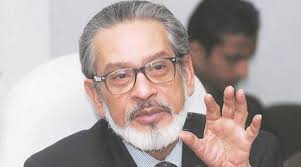
- 10 Sep 2024
In News:
The recent dissolution of the 14-member Standing Committee on Statistics (SCoS) by the Union Ministry of Statistics and Programme Implementation has sparked considerable controversy and debate. The committee, which was chaired by Pronab Sen, a renowned economist and former chief statistician of India, was reportedly disbanded after its members raised concerns about the delay in conducting the decennial census.
Key Points:
- Dissolution of the Committee:
- The SCoS, formed in July 2023, was responsible for advising the Union government on survey methodology and statistical frameworks. According to the experts the decision to dissolve the SCoS was due to an overlap in functions with the newly formed Steering Committee for National Sample Surveys.
- Concerns and Criticism:
- Dr. Pronab Sen and other committee members expressed concerns over the delay in conducting the census, which was due in 2021 but has yet to be carried out. The last census, conducted in 2011, is now outdated, impacting the accuracy of various statistical surveys.
- Members of the SCoS reportedly questioned the delay in census operations during their meetings, leading to speculation that their concerns may have contributed to the committee's dissolution.
- Formation of the New Steering Committee:
- The new Steering Committee for National Sample Surveys, chaired by Rajeeva Laxman Karandikar, was established following a recommendation by the National Statistical Commission (NSC). The roles of this new committee are said to overlap with those of the SCoS, which the Ministry cited as a reason for disbanding the latter.
Standing Committee on Statistics (SCoS)
- The Standing Committee on Statistics (SCoS) was established by renaming and expanding the scope of the Standing Committee on Economic Statistics (SCES), which was originally formed in December 2019.
- The SCES, with 28 members, was tasked with reviewing economic indicators related to the industrial sector, services sector, and labor force statistics, including datasets like the Periodic Labour Force Survey, the Annual Survey of Industries, and the Economic Census.
Current Structure and Members: The newly formed SCoS comprises 14 members, including:
- Four Non-Official Members
- Nine Official Members
- One Member Secretary
The committee's total membership can be extended up to 16 based on requirements.
Functions:
1. Review and Address Issues:
o The SCoS reviews the existing frameworks and addresses issues related to all surveys as presented by the Ministry of Statistics and Programme Implementation (MoSPI). This includes evaluating survey results and methodologies.
2. Advisory Role:
o It advises on various aspects of survey methodology, including sampling frames, sampling designs, and survey instruments. The committee is also responsible for finalizing the tabulation plans and results of surveys.
3. Data Collection and Production:
o The SCoS oversees the design and implementation of all data collection and production efforts. It ensures that data collected by MoSPI adheres to high standards of statistical quality and accuracy.
India-Singapore Relations
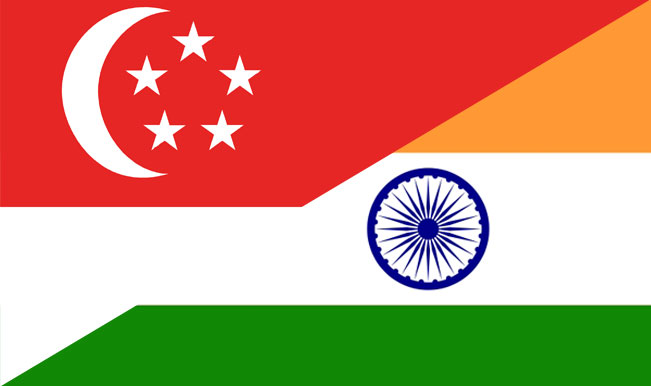
- 04 Sep 2024
- High-Level Inter-Governmental Contacts:
- Frequent and high-level exchanges, including the Prime Minister's upcoming visit.
- Recent second India-Singapore Ministerial Roundtable with senior Indian ministers.
- Key Areas of Cooperation:
- Digitalisation, skills development, sustainability, healthcare, advanced manufacturing, and connectivity.
- Broader contacts include parliamentary and judicial exchanges.
- Economic Ties:
- Singapore is India’s largest trading partner among ASEAN countries and the sixth largest globally.
- Singapore is also the largest source of foreign direct investment (FDI) for India.
- People-to-People Exchanges:
- Large concentration of IIT and IIM alumni in Singapore.
- Historical ties, including the Indian National Army's presence and the contributions of early Indian diaspora in Singapore.
- Regional Policy and Strategic Importance:
- Singapore has supported India’s “Look East” and “Act East” policies.
- Facilitated India’s dialogue partnership with ASEAN.
- Regional implications due to Myanmar’s instability, with India and Singapore both having stakes.
- Defence and Maritime Cooperation:
- Important defence component and maritime collaboration.
- Focus on the Indo-Pacific region amidst growing Chinese influence and new regional architectures like the QUAD.
- Trade and Economic Outlook:
- The visit provides an opportunity to review and expand trade and economic partnerships.
- Potential for increased Chinese FDI into India, with Singaporean entities likely to play a role.
- Complementarities and Challenges:
- Singapore's role as a global trading and investment hub complements India’s economic landscape.
- Highlights India's regulatory and structural inefficiencies, pointing to areas needing improvement for enhanced bilateral cooperation.
23rd Law Commission of India
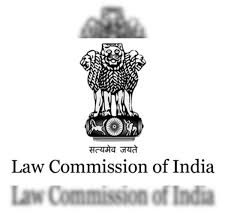
- 06 Sep 2024
Constitution and Tenure:
- Notification and Term:
- The 23rd Law Commission of India was notified by the Union government on September 2, with effect from September 1.
- The commission will have a three-year term, concluding on August 31, 2027.
- The tenure of the previous Law Commission, chaired by former Karnataka High Court Chief Justice Ritu Raj Awasthi, ended on August 31.
Role and Importance of the Law Commission:
- Purpose:
- The Law Commission is a non-statutory body formed by the Union Ministry of Law and Justice through a gazette notification.
- Its role includes reviewing the functioning of laws, recommending the repeal of obsolete legislation, and providing recommendations on issues referred by the government.
- Composition:
- Typically chaired by a retired Supreme Court or High Court judge.
- Includes legal scholars and can also have serving judges.
- Impact:
- Over the years, 22 Law Commissions have submitted 289 reports.
- Their recommendations have influenced significant legislation, such as the Code of Criminal Procedure, 1973 (CrPC), and the Right of Children to Free and Compulsory Education Act, 2009 (RTE Act).
Constitution of the 23rd Law Commission:
- Structure:
- The commission will consist of:
- A full-time chairperson.
- Four full-time members, including a member-secretary.
- Up to five part-time members.
- Ex officio members including the secretaries of the Legal Affairs and Legislative departments.
- The commission will consist of:
- Appointment and Remuneration:
- Chairperson and full-time members can be serving Supreme Court or High Court judges or other experts chosen by the government.
- The chairperson will receive a monthly salary of ?2.50 lakh, while members will receive ?2.25 lakh.
- The member-secretary must be an officer of the Indian Legal Service of the rank of Secretary.
- Serving judges appointed to the commission will serve until retirement or the end of the commission’s term, without additional remuneration.
Terms of Reference:
- Primary Tasks:
- Identify and recommend the repeal of obsolete or irrelevant laws.
- Create a Standard Operating Procedure (SOP) for periodic review and simplification of existing laws.
- Identify laws that are misaligned with current economic needs and suggest amendments.
- Directive Principles and Reforms:
- Examine laws in light of Directive Principles of State Policy and suggest improvements and new legislation to achieve constitutional objectives.
- Address laws affecting the poor, conduct post-enactment audits of socio-economic legislation, and review judicial administration for responsiveness.
Previous Commission's Contributions:
- Reports and Recommendations:
- The 22nd Law Commission produced 11 reports, including:
- A report in April 2023 recommending retention of Section 124A of the Indian Penal Code (sedition law), with suggested amendments for clarity.
- A report recommending a new law to protect trade secrets.
- A report on simultaneous elections, though it was not submitted to the government before the commission’s chairperson assumed office as a Lokpal member.
- The 22nd Law Commission produced 11 reports, including:
Upcoming Focus:
- The 23rd Law Commission is expected to continue examining key issues, including the implementation of a uniform civil code, which was also considered by the 22nd Commission but whose recommendations remain unpublished.
New Light-based Tool to Detect Viral Infections
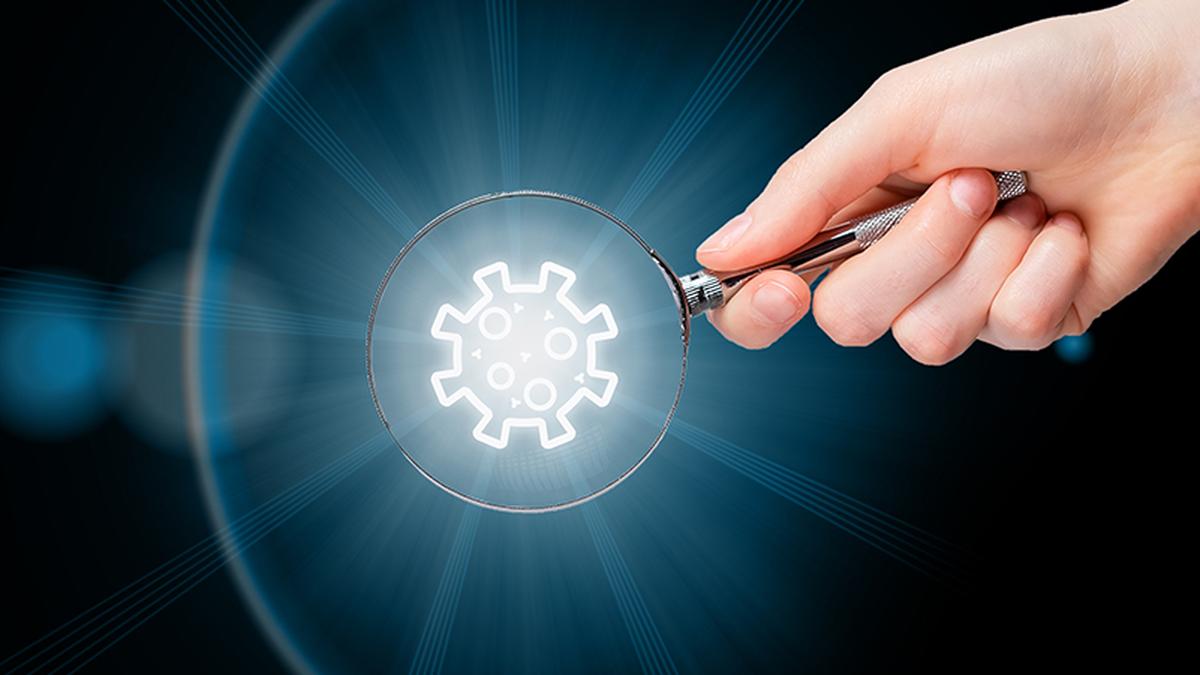
- 30 May 2024
Why is it in the News?
A viral infection can stress cells and change their shapes and sizes. Researchers have built a tool to detect these changes.
About the new Tool:
- A team of researchers has developed an innovative method to detect viral infections in cells using only light and principles of high-school physics.
- The key insight is that viral infections can stress cells, causing changes in their shapes, sizes, and other features.
- As the infection progresses and the body becomes diseased, these changes become more pronounced.
- The researchers have found a way to translate these cellular changes into recognizable patterns that can indicate whether a cell is uninfected, virus-infected, or dead.
- For example, virus-infected cells tend to be elongated and have clearer boundaries compared to uninfected cells.
- By analyzing the patterns of light interacting with cells, this method can non-invasively differentiate between uninfected, virus-infected, and dead cells.
- This approach has the potential to revolutionize viral disease diagnosis and monitoring, providing a simple, cost-effective, and powerful tool for detecting viral infections at the cellular level.
Significance:
- This light-based approach to detecting viral infections offers several significant advantages over the current standard methods:
- Accuracy: The new light-based technique can detect viral infections with equal or even greater accuracy compared to existing standard methods that rely on chemical reagents.
- Cost-effectiveness: The equipment required for this new method costs only around one-tenth of the $3,000 (approximately Rs 2.5 lakh) needed for the standard chemical-based approach, making it a far more affordable option, especially for resource-constrained settings.
- Rapid results: The light-based method can identify virus-infected cells in just about two hours, significantly faster than the 40 hours required by the current standard method.
- This time efficiency can be crucial in situations where rapid detection is essential, such as during a virulent disease outbreak.
- Early detection: By enabling the early detection of viral infections at the cellular level, this new technique could prove invaluable in containing the spread of highly contagious viral diseases, such as a severe influenza outbreak.
What are Viruses?
- Viruses are microscopic organisms capable of infecting various hosts such as humans, plants, animals, bacteria, and fungi.
- Structurally, they consist of genetic material (DNA or RNA) enclosed in a protective shell called a capsid, with some viruses also possessing an envelope.
- Unable to reproduce independently, viruses rely on host cells to replicate by utilizing the cell's machinery.
- Common types include influenza viruses, human herpesviruses, coronaviruses, human papillomaviruses, enteroviruses, flaviviruses, orthopoxviruses, and hepatitis viruses.
- Viruses are responsible for causing illnesses such as flu, the common cold, and COVID-19.
Kaza TFCA (Kavango Zambezi Transfrontier Conservation Area) Summit
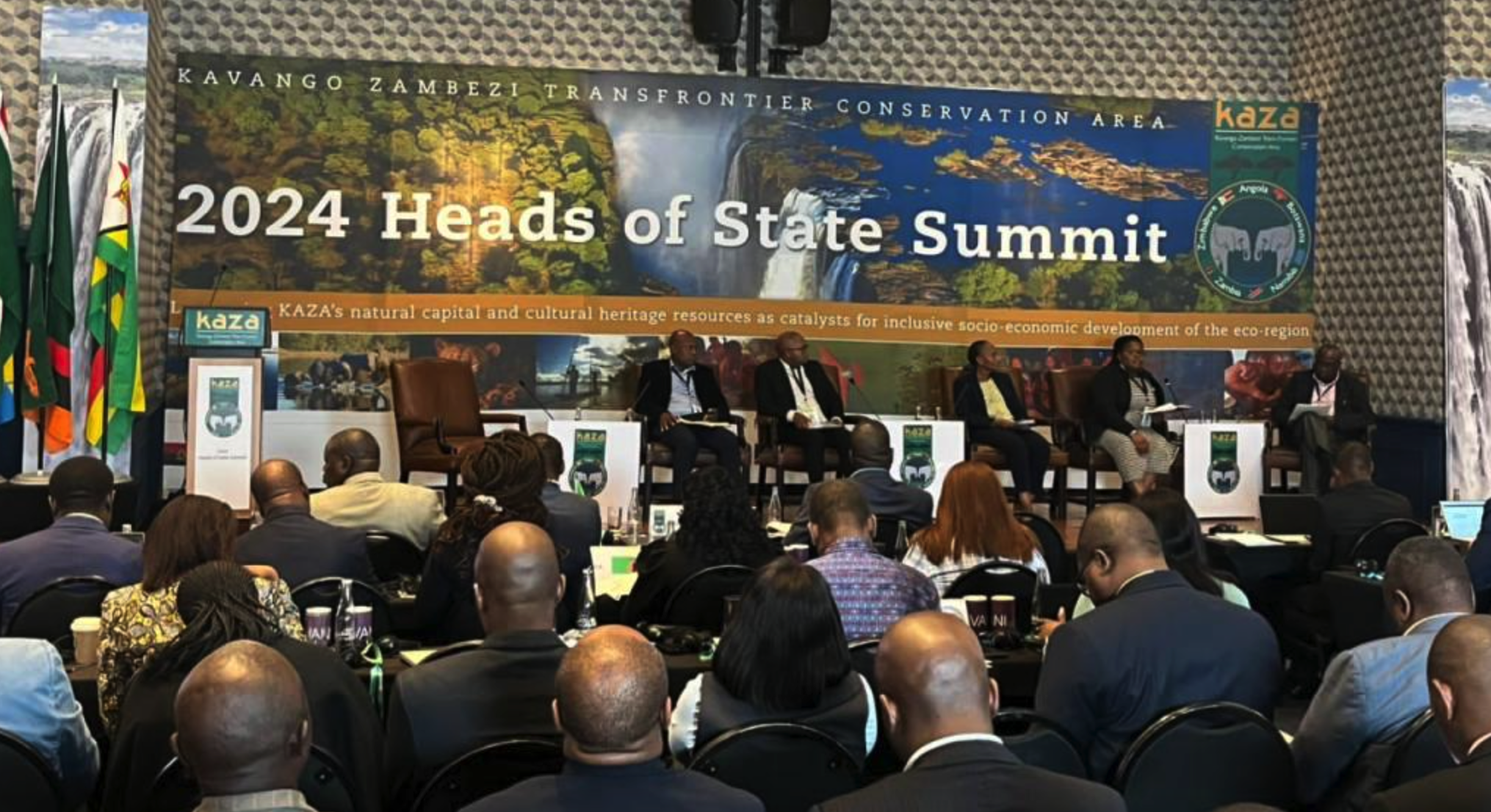
- 29 May 2024
Why is it in the News?
Members states of the world’s largest transnational conservation initiative meet to review progress and strategise the way forward.
About the Kaza TFCA (Kavango Zambezi Transfrontier Conservation Area) Summit:
- The Kaza TFCA (Kavango Zambezi Transfrontier Conservation Area) Summit is a high-level meeting of the heads of state and government representatives from the countries that make up the Kaza TFCA.
- The Kaza TFCA is a conservation area that spans parts of Angola, Botswana, Namibia, Zambia and Zimbabwe.
Some key points about the Kaza TFCA Summit:
- It brings together the political leadership from the five Kaza member countries to discuss issues related to the conservation and sustainable development of the Kaza transfrontier area.
- Topics discussed include wildlife conservation, tourism development, community involvement, and joint management of shared natural resources across international boundaries.
- The Summit aims to strengthen political support, coordination and collaboration among the Kaza partner countries for effective transboundary natural resource management.
- It provides a platform for the member states to review progress made, agree on priorities, and give strategic direction for the Kaza program going forward.
- The Summits are held periodically, with the last one being hosted by Botswana in 2018 in Kasane.
About the Kavango Zambezi Transfrontier Conservation Area:
- The Kavango Zambezi Transfrontier Conservation Area is a 520,000-square-kilometre wetland and spans five southern African countries: Angola, Botswana, Namibia, Zambia and Zimbabwe.
- It is home to a high concentration of wildlife species, including the largest elephant population.
- The KAZA TFCA was formally established on the 18th of August 2011 when the Heads of State of the five governments signed its Treaty in Luanda, Angola, during the SADC Summit for Heads of States.
The KAZA TFCA was established to:
- Conserve the shared natural resources and cultural heritage of this vast area of southern Africa
- Promote and facilitate the development of a complementary and linked network of protected areas that protect wildlife and provide and restore dispersal corridors and migratory routes
- Develop the KAZA TFCA into a world-class tourism destination offering a variety of breathtaking adventures and luxurious relaxation
- Promote the free and easy movement of tourists across borders
- Implement programmes that ensure the sustainable use of natural resources in ways that improve the livelihoods of communities and reduce poverty in the region
- Harmonise conservation legislation and natural resource management of the TFCA
Zero Debris Charter
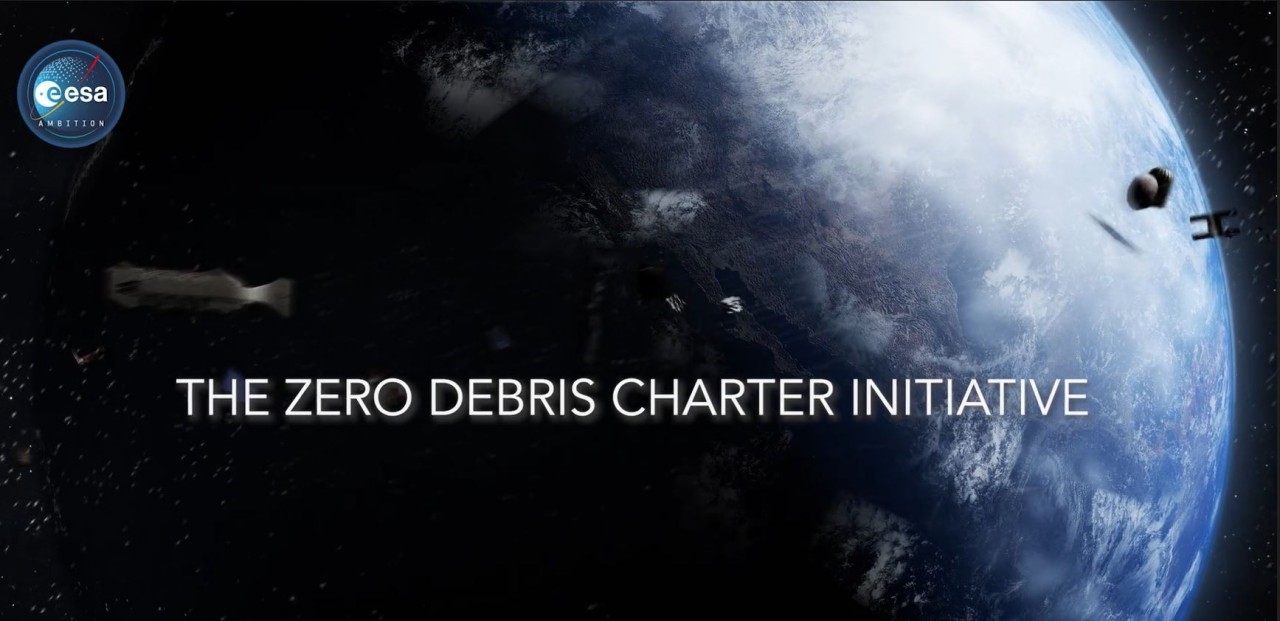
- 27 May 2024
Why is it in the News?
Twelve nations have signed the Zero Debris Charter at the ESA/EU Space Council, solidifying their commitment to the long-term sustainability of human activities in Earth orbit.
What is the Zero Debris Charter?
- The Zero Debris Charter is an initiative of the European Space Agency (ESA) and a non-legally binding, technically driven and community-building instrument.
- It is a world-leading effort to become debris-neutral in space by 2030.
- It outlines high-level guiding principles and sets ambitious, collectively defined targets to realize the goal of Zero Debris.
- The charter has been endorsed by countries including Austria, Belgium, Cyprus, Estonia, Germany, Lithuania, Poland, Portugal, Romania, Slovakia, Sweden, and the United Kingdom.
What are Space Debris?
- Space debris encompasses all non-functional, man-made objects in Earth's orbit or re-entering the Earth's atmosphere.
- This category includes decommissioned satellites, spent rocket bodies, fragments resulting from spacecraft breakups or collisions, and debris from anti-satellite weapon tests.
- Presently, there are over one million pieces of space debris larger than one centimetre orbiting Earth.
What are the Concerns with Space Debris?
- Threat to Space Infrastructure: Collisions with operational satellites can disrupt navigation and communication systems on Earth.
- Kessler Syndrome: The uncontrolled accumulation of debris can trigger an escalating cascade of collisions, exacerbating the problem.
- Risk on Earth: Large space debris re-entering the atmosphere uncontrollably poses risks to the population on the ground.
- Increased Cost: Expensive collision avoidance manoeuvres must be performed to protect valuable space assets.
Initiatives for Space Debris Mitigation:
Global:
- Inter-Agency Space Debris Coordination Committee (IADC): A global entity that coordinates activities related to space debris among various space agencies worldwide.
- Space Debris Mitigation Guidelines: Established by the Committee on the Peaceful Uses of Outer Space (COPUOS), these guidelines provide recommendations for reducing the generation of space debris and promoting the long-term sustainability of outer space activities.
India:
- Debris-Free Space Missions (DFSM): An initiative by ISRO aimed at achieving debris-free space missions by 2030, implemented through the ISRO System for Safe & Sustainable Space Operations Management (IS4OM).
- Project NETRA (NEtwork for Space Object Tracking and Analysis): A project focused on enhancing space situational awareness to monitor and manage space debris.
Small Island Developing States
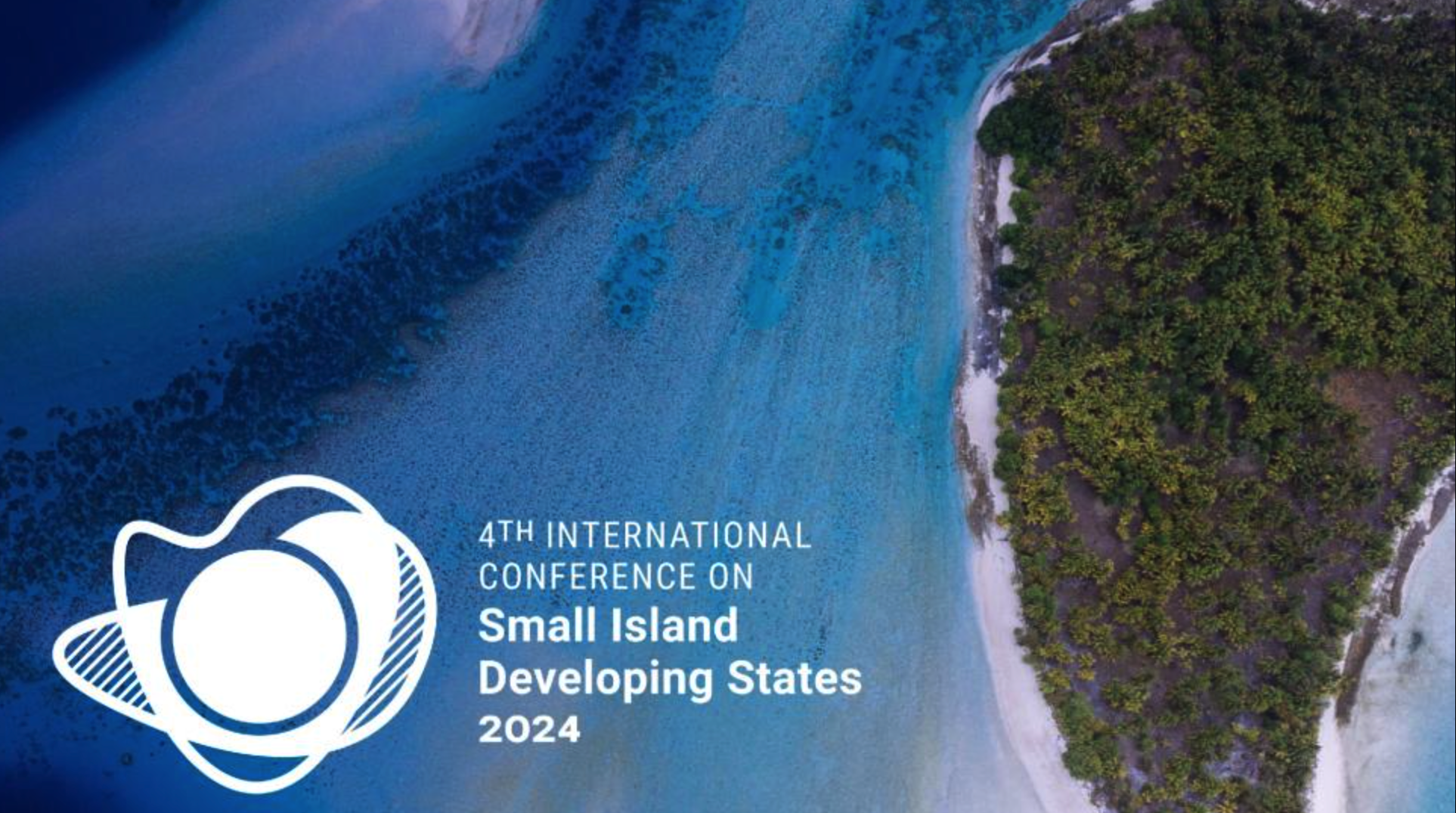
- 27 May 2024
Why is it in the News?
The Fourth International Conference on Small Island Developing States (SIDS-4) will be convened from May 27-30, 2024.
About Small Island Developing States (SIDS):
- Small Island Developing States (SIDS) are a distinct group of 39 States and 18 Associate Members of United Nations regional commissions that face unique social, economic and environmental vulnerabilities.
- The three geographical regions in which SIDS are located are:
- The Caribbean
- The Pacific
- The Atlantic, Indian Ocean and South China Sea (AIS)
- SIDS were recognized as a special case both for their environment and development at the 1992 United Nations Conference on Environment and Development held in Rio de Janeiro, Brazil.
- The aggregate population of all the SIDS is 65 million, slightly less than 1% of the world’s population, yet this group faces unique social, economic, and environmental challenges.
- SIDS face a host of challenges including for many, their remote geography.
- As a result, many SIDS face high import and export costs for goods as well as irregular international traffic volumes.
- For SIDS, the Exclusive Economic Zone (EEZ)—the ocean under their control—is, on average, 28 times the country’s land mass.
- Thus, for many SIDS the majority of the natural resources they have access to comes from the ocean.
- Factors like small population size, remoteness from international markets, high transportation costs, vulnerability to exogenous economic shocks and fragile land and marine ecosystems make SIDS particularly vulnerable to biodiversity loss and climate change because they lack economic alternatives.
- Climate change has a very tangible impact on SIDS.
- Slow onset events such as sea level rise pose an existential threat to small island communities, requiring drastic measures such as relocation of populations, and the related challenges this poses.
- These challenges are compounded by limited institutional capacity, scarce financial resources and a high degree of vulnerability to systemic shocks.
- Industries like tourism and fisheries can constitute over half of the GDP of small island economies.
- However, the importance of these natural resources extends beyond the economy; biodiversity holds aesthetic and spiritual value for many island communities.
- For centuries, these communities have drawn benefits from biodiversity in the form of food supply, clean water, reduced beach erosion, soil and sand formation, and protection from storm surges.
- At the regional level, SIDS are also supported by inter-governmental organisations, primarily the?Caribbean Community (CARICOM),?the?Pacific Islands Forum (PIF)?and the Indian Ocean Commission (IOC).
World Intellectual Property Organization (WIPO) Meeting 2024
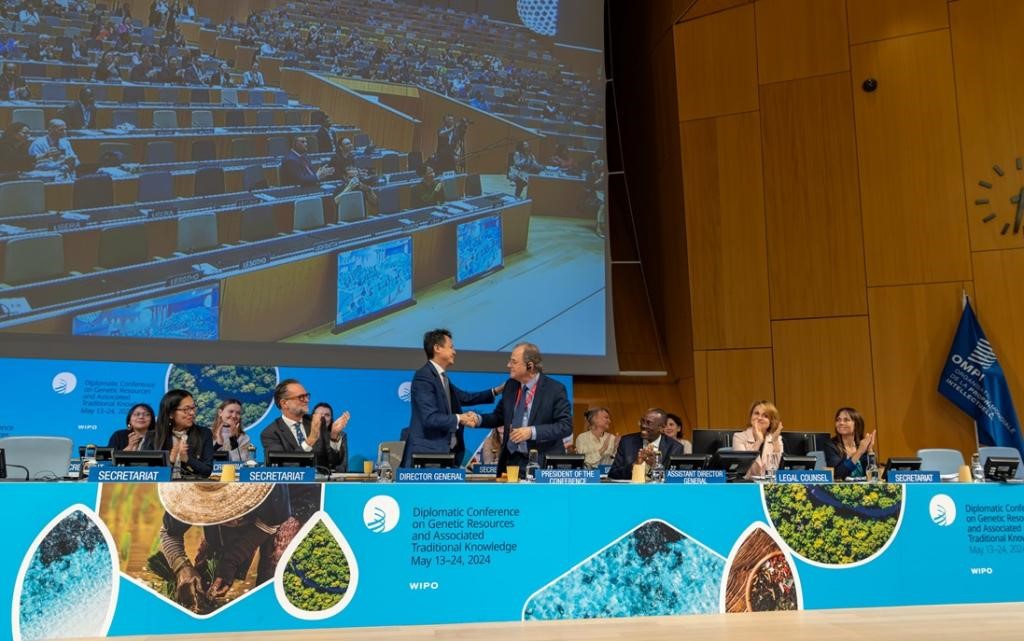
- 25 May 2024
Why is it in the News?
The Treaty on Intellectual Property, Genetic Resources and Associated Traditional Knowledge was adopted at the Diplomatic Conference held under the aegis of the World Intellectual Property Organization (WIPO) at its headquarters in Geneva recently.
What is the WIPO Meeting 2024?
- The World Intellectual Property Organization (WIPO) Meeting 2024 focuses on final-stage negotiations for a proposed treaty on intellectual property, genetic resources, and associated traditional knowledge.
- The aim is to protect the rights of communities that conserve genetic resources and hold traditional knowledge of their use.
- The main goal of the treaty is to enhance the efficacy, transparency, and quality of the patent system regarding genetic resources and traditional knowledge.
- It aims to prevent patents for non-novel or non-inventive inventions and ensure proper disclosure of genetic resources and traditional knowledge in patent applications.
Key challenges in the negotiations:
- Key challenges include reaching a consensus on mandatory disclosure requirements, addressing biopiracy, deciding on the inclusion of DSI in the treaty, and defining traditional knowledge.
- Countries like the United States, Japan, and South Korea generally oppose mandatory disclosure requirements, adding complexity to the negotiations.
What are genetic resources and traditional knowledge associated?
- Genetic resources are genetic material of actual or potential value found in plants, animals, and microorganisms.
- These resources are essential in fields like agriculture, pharmaceuticals, and biotechnology.
- Traditional knowledge associated with genetic resources refers to the knowledge, practices, and innovations of indigenous and local communities, developed and passed down through generations.
- This knowledge is often related to the use and conservation of genetic resources.
What is Biopiracy?
- Biopiracy refers to the unauthorized use and patenting of genetic resources and traditional knowledge without proper compensation or acknowledgement to the communities that developed and conserved them.
- The treaty seeks to address biopiracy by requiring the disclosure of genetic resources and traditional knowledge in patent applications and aligning with international agreements like the Nagoya Protocol.
What is Digital sequence information (DSI)?
- Digital sequence information (DSI) refers to the digital representation of genetic material.
- The treaty currently excludes DSI from its scope, which is a point of contention as it affects the management and protection of genetic resources.
- Including DSI in the treaty is under debate to ensure comprehensive protection.
Outcomes and Significance of this Meeting:
- Expected outcomes include finalizing the treaty's text, agreeing on substantive intellectual property provisions, and administrative issues.
- Once finalized, the treaty will be open for signature and aims to provide a robust framework for protecting genetic resources and traditional knowledge.
- The treaty also aims to protect the rights of indigenous and local communities by ensuring they receive fair compensation and recognition for their genetic resources and traditional knowledge.
- It also promotes the sustainable use and conservation of these resources, benefiting both global and local communities.
- The treaty has broader implications for international intellectual property law, biodiversity conservation, and the rights of indigenous and local communities.
- It aims to balance the interests of patent holders with the need to protect and sustainably use genetic resources and traditional knowledge.
India’s Role:
- India plays a significant role in the negotiations by advocating for strong disclosure requirements and a clear definition of traditional knowledge.
- India's participation helps ensure that the treaty provides sufficient policy space for countries to maintain their current stronger disclosure requirements under national laws.
World Health Assembly 2024
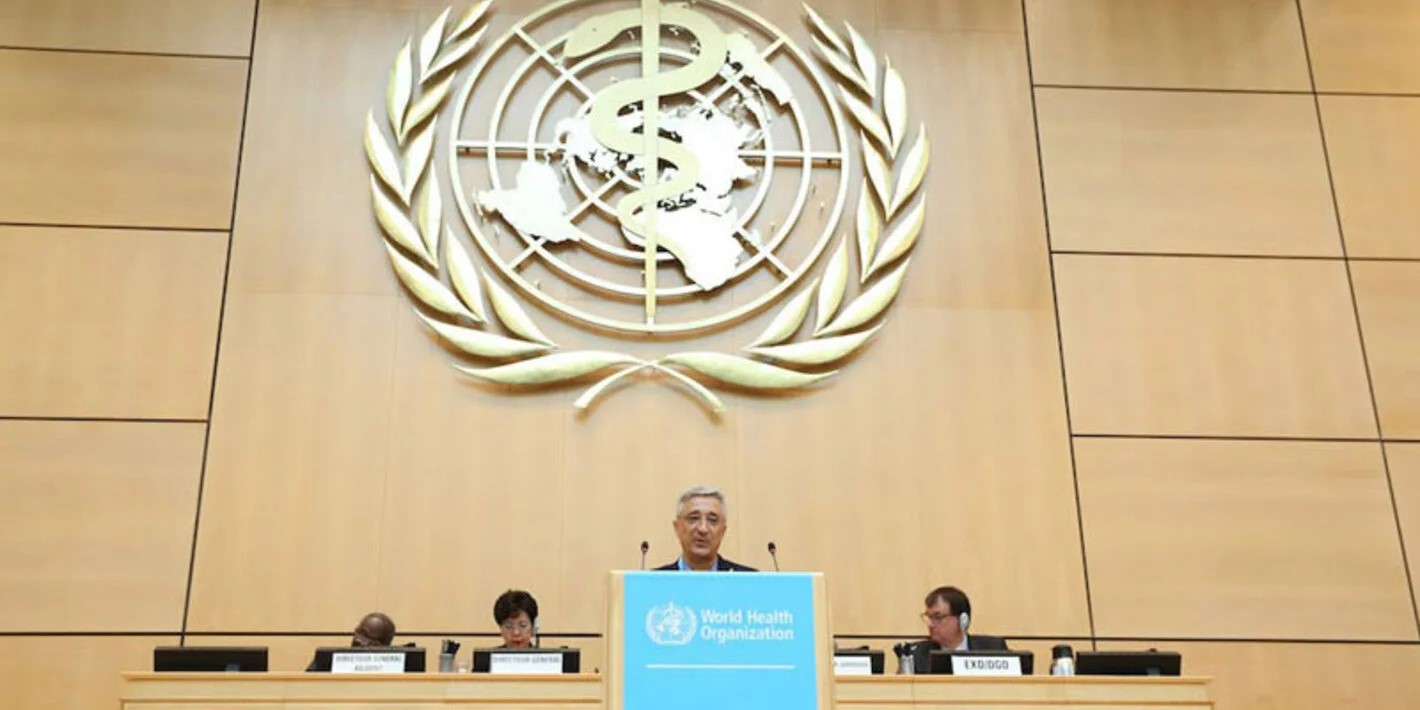
- 25 May 2024
Why is it in the News?
The World Health Assembly will convene from May 27 to June 1 to discuss amendments to the International Health Regulations, aimed at improving the ability of countries to respond to public health emergencies and prepare a potential new pandemic agreement.
What is the World Health Assembly?
- The World Health Assembly is the decision-making body of the World Health Organization (WHO), the United Nations (UN) agency dedicated to promoting the global population's health and access to the highest levels of healthcare provision.
- Its main functions are to determine WHO's policies, elect the Organization's Director-General, supervise financial policies, and review and approve the proposed WHO budget.
- Delegates from WHO member states come together at an annual assembly held at the UN headquarters in Geneva, Switzerland, to focus on a specific healthcare agenda created by the organization's Executive Board.
- The Executive Board comprises 34 technically qualified members, each elected for a three-year term.
- They meet every year in January to agree on the agenda and any resolutions that will be put before the World Health Assembly for consideration.
- Now in its 76th session, the theme for this year’s event is “Health For All: 75 Years of Improving Public Health”.
What does the Assembly do?
- Delegates at the annual World Health Assembly discuss the Executive Board's policy agenda for the coming year and decide which health goals and strategies will guide the WHO's public health work.
- Other functions include voting to appoint the organization's Director-General to serve a five-year term.
- Dr Tedros Adhanom Ghebreyesus holds the post currently, having been re-elected in 2022 to serve a second term as head of the world's leading public health agency.
Why is it important?
- Since its inauguration, the Assembly has presided over WHO policies that have helped eradicate deadly diseases like smallpox and the poliovirus and helped foster international collaborations to develop and distribute vaccines for diseases like malaria and COVID-19.
About International Health Regulations (IHR):
- First adopted by the World Health Assembly (WHA) in 1969, the IHR was last revised in 2005. These regulations aim to maximize collective efforts in managing public health events while minimizing disruptions to travel and trade.
- The IHR has 196 State Parties, including all 194 WHO Member States, plus Liechtenstein and the Holy See.
- The IHR provide a comprehensive legal framework that outlines countries' rights and obligations in managing public health events and emergencies with the potential to cross borders.
- The regulations introduce crucial safeguards to protect the rights of travellers and others, covering the treatment of personal data, informed consent, and non-discrimination in the application of health measures.
- Legally Binding Instrument: As an instrument of international law, the IHR is legally binding on 196 countries.
Shallow Aquifer Management (SAM)
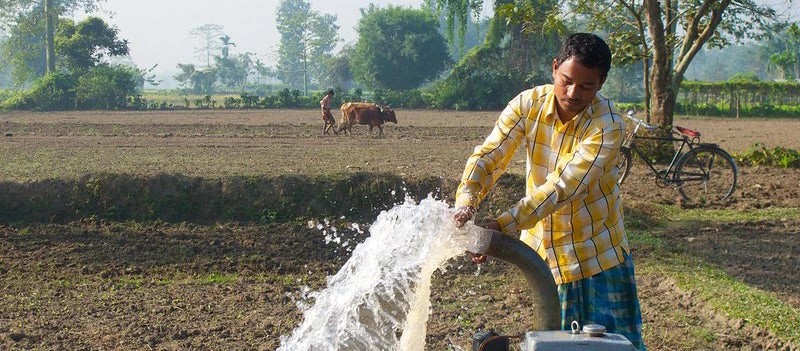
- 24 May 2024
Why is it in the News?
Securing water for the future as the mantra, the Greater Hyderabad Municipal Corporation (GHMC) in the latest intervention has taken up the Shallow Aquifer Management (SAM) model on a pilot basis in the city.
What is an Aquifer?
- An aquifer is a body of porous rock or sediment that is saturated with groundwater.
- Groundwater enters an aquifer through precipitation that seeps down through the soil.
- It can then move through the aquifer and emerge at the surface via springs and wells.
- Aquifers are classified into two types:
- Deep Aquifers
- Shallow Aquifers
What is Shallow Aquifer Management (SAM)?
- In 2022, the Atal Mission for Rejuvenation and Urban Transformation (AMRUT) launched a Shallow Aquifer Management (SAM) pilot program in ten cities across nine states:
- Bengaluru (Karnataka), Chennai (Tamil Nadu), Dhanbad (Jharkhand), Gwalior (Madhya Pradesh), Hyderabad (Telangana), Jaipur (Rajasthan), Kolkata (West Bengal), Pune and Thane (Maharashtra), and Rajkot (Gujarat).
- The SAM pilot is overseen by the National Institute of Urban Affairs (NIUA) and supported by the Advanced Center for Water Resources Development and Management (ACWADAM) in Pune and the Biome Environmental Trust in Bengaluru.
- Under SAM, the Greater Hyderabad Municipal Corporation (GHMC) has identified five municipal parks for implementation this year.
How does it work?
- The project involves drilling shallow water injection borewells to depths of 100-120 feet to extract water from shallow aquifers.
- This process helps recharge the underlying layers during rainfall events by collecting water from the surrounding watershed and directing it through recharge pits.
- Consequently, underground water layers are replenished, leading to a rise in the water table.
Global Species Action Plan (GSAP) SKILLS Platform
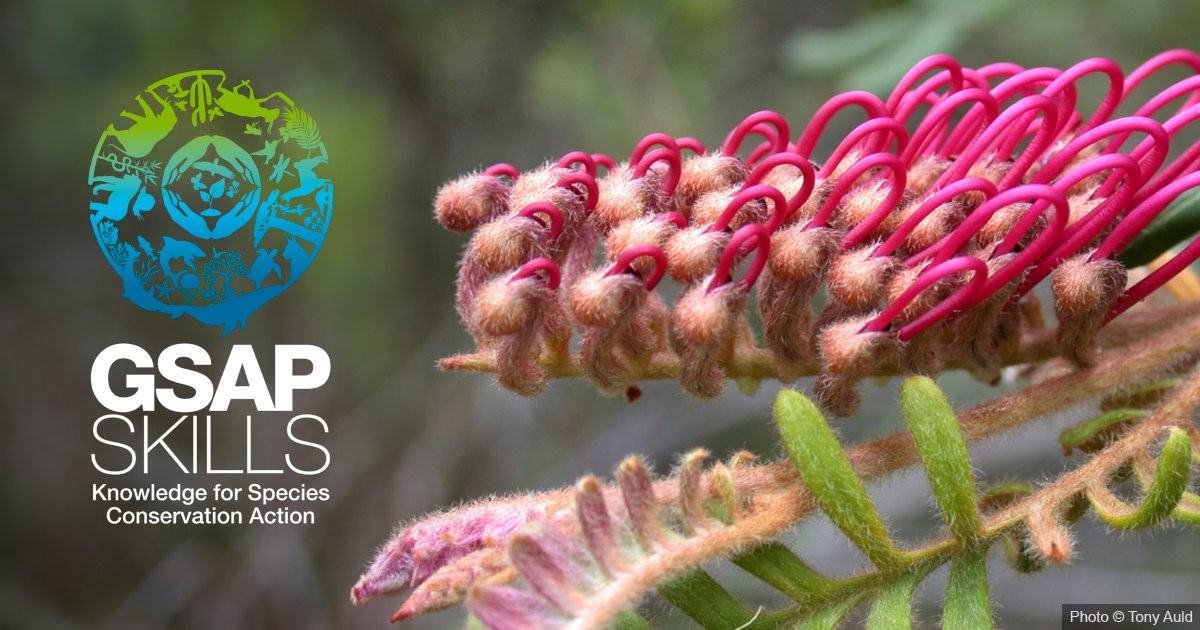
- 24 May 2024
Why is it in the News?
In response to the escalating biodiversity crisis, the Global Species Action Plan (GSAP) is designed to support the implementation of the Kunming-Montreal Global Biodiversity Framework (GBF).
About GSAP SKILLS Platform:
- The Global Species Action Plan (GSAP) SKILLS platform, standing for (Species Conservation Knowledge, Information, Learning, Leverage, and Sharing), brings the GSAP’s content online and enables real-time updates of technical tools and resources.
- This platform aims to facilitate global collaboration and partnership by connecting decision-makers, species conservation practitioners, and experts at all levels.
- It ensures accessibility and relevance by providing real-time updates on technical tools and resources.
- Each target within the Global Biodiversity Framework is accompanied by a summary and rationale for species conservation interventions, actions, and sub-actions, along with the actors involved and the technical tools and resources required, facilitating the scaling-up of implementation efforts.
- Managed proactively by the International Union for Conservation of Nature (IUCN), the platform meets the needs of governments and stakeholders to take decisive action for species conservation.
- The development of the GSAP SKILLS platform has been principally supported by the Ministry of Environment, Republic of Korea, with additional resources from the Tech4Nature Initiative, launched by IUCN and Huawei in 2020.
What is the Global Species Action Plan?
- It has been developed to support the implementation of the Kunming-Montreal Global Biodiversity Framework (GBF) and to address the increasing biodiversity loss worldwide.
- It outlines strategic interventions and actions to conserve and sustainably manage species while ensuring equitable benefits.
About Kunming-Montreal Global Biodiversity Framework:
- The Kunming-Montreal Global Biodiversity Framework (GBF) is an outcome of the 2022 United Nations Biodiversity Conference.
- Its tentative title had been the "Post-2020 Global Biodiversity Framework".
- The GBF was adopted by the 15th Conference of Parties (COP15) to the Convention on Biological Diversity (CBD) on 19 December 2022.
- It has been promoted as a "Paris Agreement for Nature".
- It is one of a handful of agreements under the auspices of the CBD, and it is the most significant to date.
- It has been hailed as a "huge, historic moment" and a "major win for our planet and for all of humanity."
- UN Secretary-General António Guterres speaking at the 2022 biodiversity conference in Montreal which led to this treaty
- The Framework is named after two cities, Kunming, which was scheduled to be the host city for COP15 in October 2020 but postponed and subsequently relinquished the hosting duties due to China's COVID policy, and Montreal, which is the seat of the Convention on Biological Diversity Secretariat and stepped in to host COP15 after Kunming's cancellation.
The League of Arab States (LAS)/Arab League
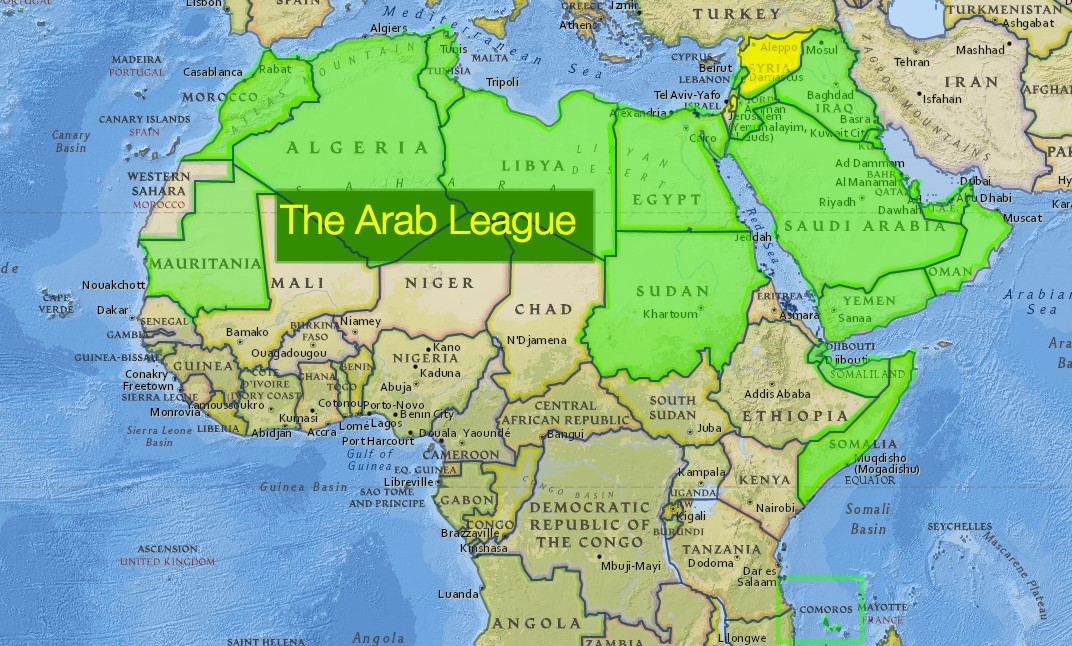
- 24 May 2024
Why is it in the News?
The Arab League called recently for a UN peacekeeping force in the "occupied Palestinian territories" at an international summit dominated by the war between Israel and Hamas.
What is the Arab League?
- The League of Arab States was formed in Cairo on 22 March 1945 with six members: Egypt, Iraq, Transjordan (later renamed Jordan), Lebanon, Saudi Arabia and Syria, with Yemen joining on 5 May 1945.
- It currently has 22 member states; Algeria, Bahrain, Comoros, Djibouti, Egypt, Iraq, Jordon, Kuwait, Lebanon, Libya, Mauritania, Morocco, Oman, Palestinian Authority, Qatar, Saudi Arabia, Somalia, Sudan, Syria, Tunisia, United Arab Emirates and Yemen.
- Four countries have been admitted as observers: Brazil, Eritrea, India and Venezuela.
- Each member state has one vote in the League Council, while decisions are binding only on those states that have voted for them.
- The official language of the Arab League and its 22 member states is Arabic.
- The league seeks to promote the political, social, and military interests of its members.
- The head of the league is known as the secretary-general.
- The secretary-general is appointed to a five-year term by a two-thirds majority of league members.
- Headquarters: Cairo, Egypt.
Goals:
- The overall aim of the league is to promote Arab interests.
- Its main goals are to strengthen and coordinate the political, cultural, economic, and social programs of its members and to try to settle disputes among them or between them and third parties.
- In 1950 the members also agreed to provide military support to help defend each other.
The Arab League Council:
- The League Council is the highest body of the Arab League and is composed of representatives of member states, typically foreign ministers, their representatives, or permanent delegates.
- Each member state has one vote.
- The Council meets twice a year, in March and September. Two or more members may request a special session if they desire.
- The general secretariat manages the daily operations of the league and is headed by the secretary-general.
- The general secretariat is the administrative body of the league, the executive body of the council, and the specialized ministerial councils.
Bay of Bengal Initiative for Multi-Sectoral Technical and Economic Cooperation (BIMSTEC)
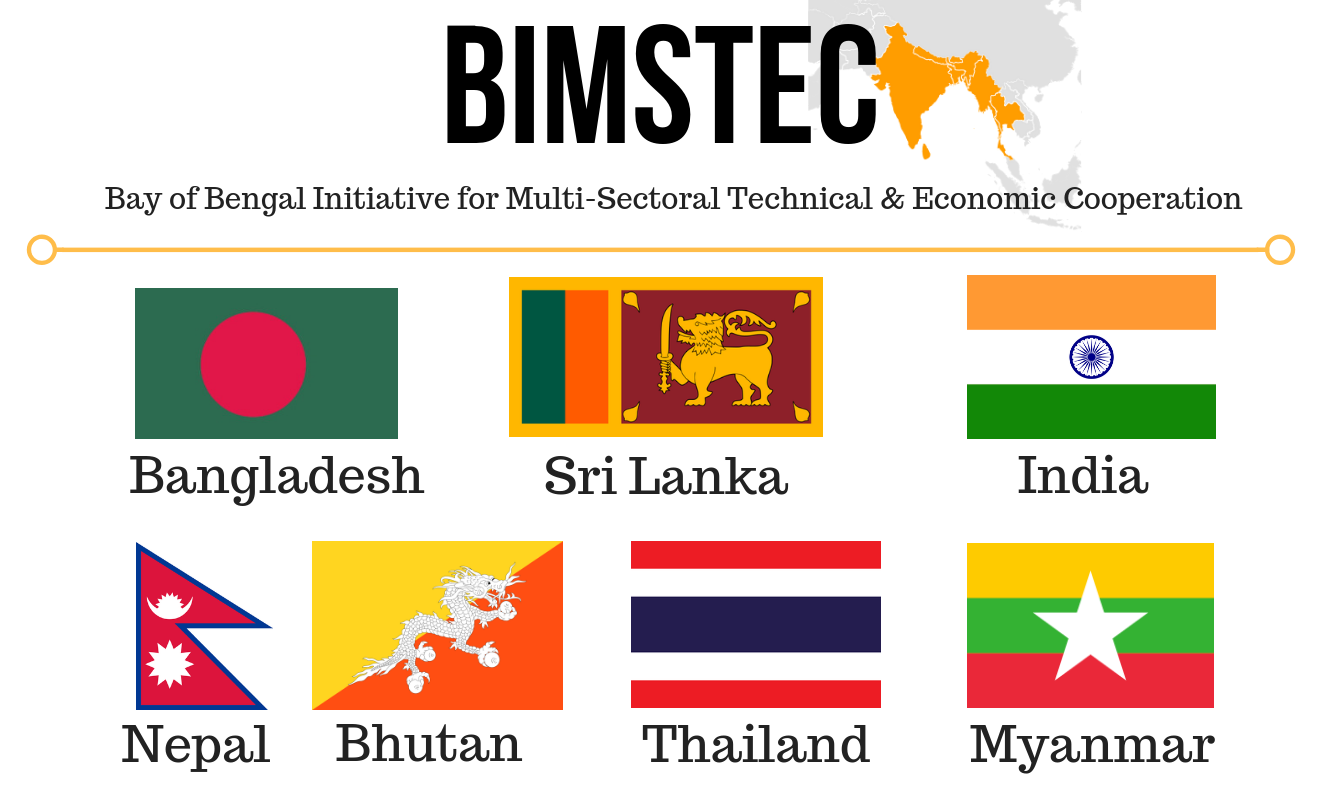
- 23 May 2024
Why is it in the News?
The Bay of Bengal Initiative for Multi-Sectoral Technical and Economic Cooperation (BIMSTEC) will now be open to new members and observers after a historic first charter of the grouping came into force on 20 May.
What is BIMSTEC?
- The Bay of Bengal Initiative for Multi-Sectoral Technical and Economic Cooperation (BIMSTEC) is a multilateral regional organization that brings together seven member states located in the littoral and adjacent areas of the Bay of Bengal, forming a contiguous regional unity.
- Aims: The primary aim of BIMSTEC is to accelerate shared growth and cooperation among littoral and adjacent countries in the Bay of Bengal region.
- Formation: The organization was initially founded as BIST-EC in June 1997, following the adoption of the Bangkok Declaration.
- The founding members included Bangladesh, India, Sri Lanka, and Thailand.
- With Myanmar's entry in late 1997, the organization evolved into BIMST-EC (Bangladesh, India, Myanmar, Sri Lanka, and Thailand Economic Cooperation).
- In 2004, the inclusion of Nepal and Bhutan led to the formation of BIMSTEC, as we know it today.
- The current member states comprise five South Asian nations: Bangladesh, Bhutan, India, Nepal, and Sri Lanka, and two Southeast Asian nations: Myanmar and Thailand.
- BIMSTEC's Permanent Secretariat is situated in Dhaka, Bangladesh, serving as a hub for regional cooperation and coordination among member states.
Areas of cooperation:
- BIMSTEC functions as a sector-driven cooperative organization, initially focusing on six key sectors: Trade, Technology, Energy, Transport, Tourism, and Fisheries.
- Over time, the scope of cooperation has expanded, and as of now, BIMSTEC has identified 14 priority areas of cooperation.
- The inclusion of Climate Change in 2008 marked the 14th priority area.
- Within these priority areas, each member country takes responsibility for leading specific sectors.
- This allows for focused efforts and utilization of regional expertise.
- India, for example, is the leading country in several crucial areas, including Transport & Communication, Tourism, Environment & Disaster Management, and Counter-Terrorism & Transnational Crime.
- This leadership role involves coordinating initiatives, sharing best practices, and driving collaborative efforts within these sectors to enhance regional development and cooperation.
Personality Rights
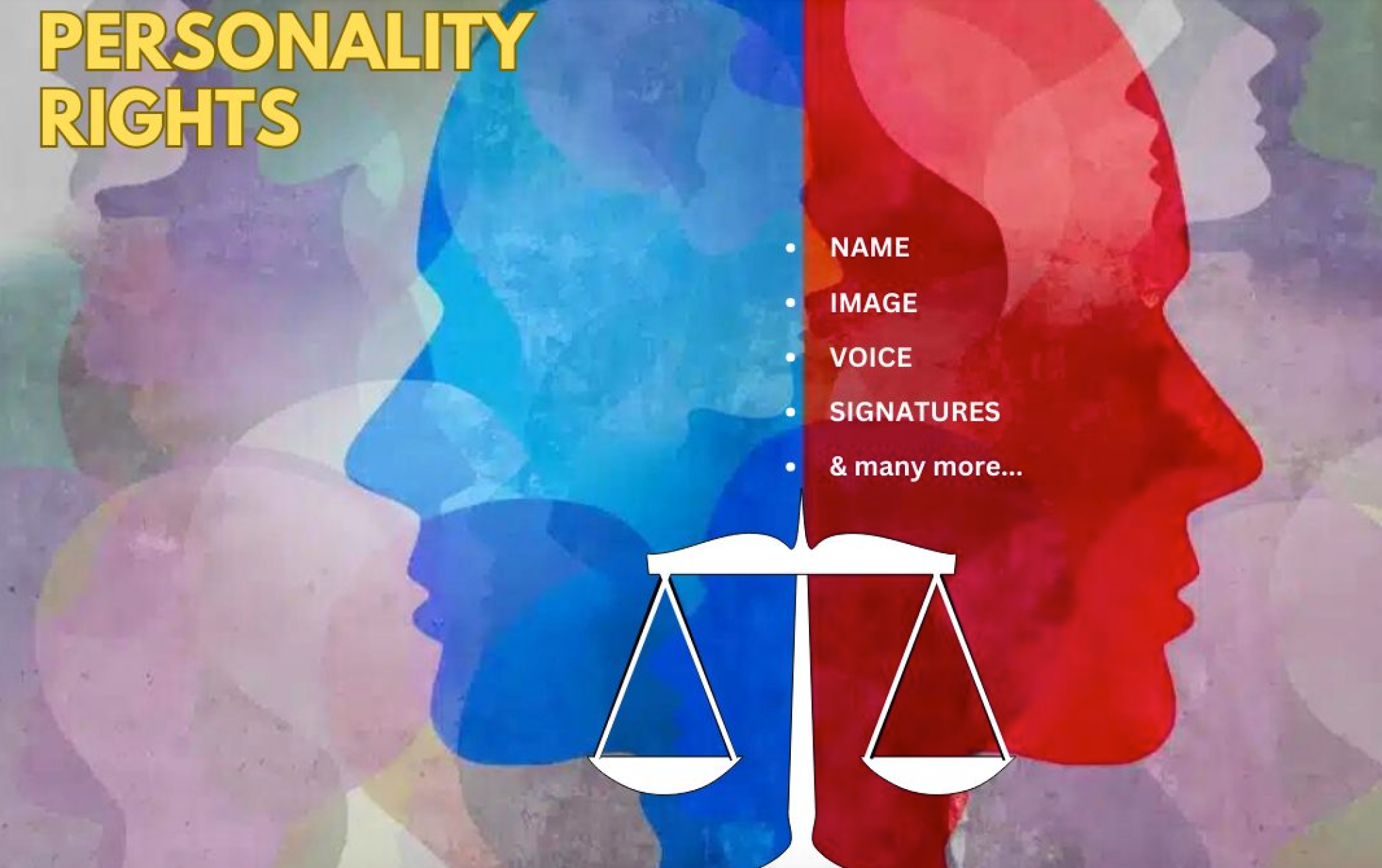
- 23 May 2024
Why is it in the News?
Hollywood actress Scarlett Johansson has said she was “shocked” and “angered” to hear the voice of GPT-4o, OpenAI’s latest AI model, as it sounded “eerily similar” to her own voice.
What are Personality Rights?
- Personality rights or publicity rights are a subset of “celebrity rights” – a much broader term used to refer to certain rights enjoyed by celebrities.
- Besides personality rights, celebrities also have “privacy rights”, which include the right to be left alone.
- The name, voice, signature, images, or any other feature easily identified by the public are markers of a celebrity’s personality and are referred to as “personality rights.”
- These could include poses, mannerisms, or any other distinct aspect of their public persona.
- Several celebrities register aspects of their personalities as trademarks to use them commercially.
- For instance, footballer Gareth Bale trademarked the heart shape he makes with his hands as part of goal celebrations.
- The rationale behind such rights is that only the creator or owner of the unique features can gain commercial benefit from them.
- Therefore, unauthorised use could lead to revenue losses.
- In India, actors such as Rajnikanth, Anil Kapoor and Jackie Shroff have approached the courts over “personality rights” in India.
- Recently, the Delhi HC protected the personality and publicity rights of actor Jackie Shroff while restraining various e-commerce stores, AI chatbots, and social media from misusing Shroff’s name, image, voice, and likeness without his consent.
How are Personality Rights Protected in India?
- Although personality rights or their protection are not explicitly defined in Indian statutes, they usually fall under the right(s) to privacy and property.
- Concepts in intellectual property rights cases, such as passing off and deception, are usually applied in such cases while ascertaining if protection is warranted.
- Protection can be given through damages and injunctions.
International Criminal Court (ICC)
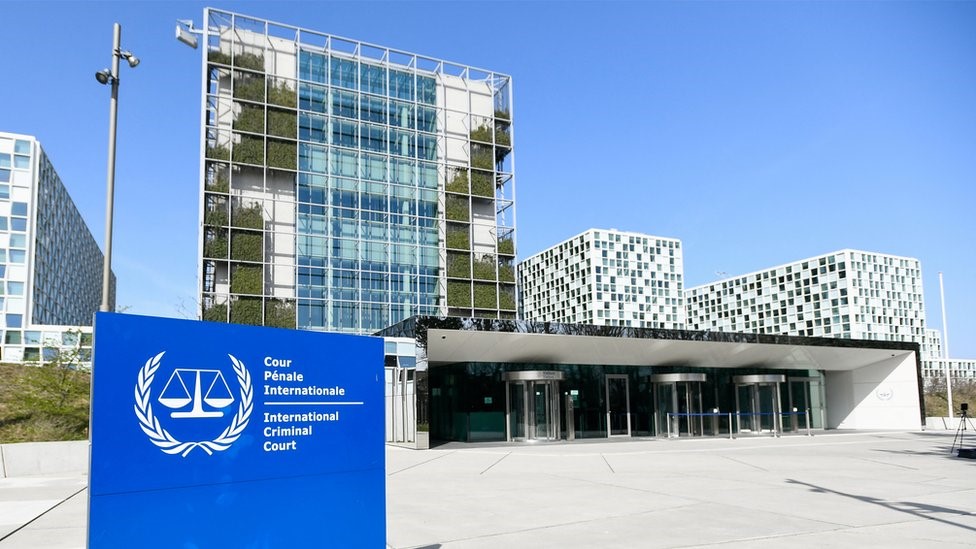
- 21 May 2024
Why is it in the News?
International Criminal Court (ICC) Chief Prosecutor recently announced that he has applied for arrest warrants against Israeli Prime Minister Benjamin Netanyahu and Defence Minister Yoav Gallant for crimes against humanity in the ongoing Gaza war.
What is the International Criminal Court (ICC)?
- The International Criminal Court (ICC) in The Hague (Netherlands) is a permanent global court established in 2002.
- The ICC was created as a result of the Rome Statute, a treaty established at a United Nations conference in Italy and signed in 1998 by 120 countries — giving the ICC its power.
- The ICC is independent of the United Nations (UN) but is endorsed by the UN General Assembly.
- It also maintains a cooperation agreement with the UN.
- It has the power to prosecute individuals and leaders for genocide, crimes against humanity and war crimes.
- Unlike the International Court of Justice (ICJ), which is an organ of the UN, the ICC does not prosecute states.
The Court does not have universal jurisdiction:
- Its jurisdiction only applies to crimes committed by nationals of States Parties or Non-States Parties that have recognized its jurisdiction through declaration and crimes committed in such States.
- The Court may also exercise its jurisdiction for crimes that have been referred to it by the United Nations Security Council, in accordance with a resolution adopted under Chapter VII of the Charter of the United Nations.
The Court’s jurisdiction is governed by the principle of complementarity:
- It does not relieve States of their primary responsibility and only intervenes when the States have been unable or did not wish, to try crimes under their jurisdiction.
- The Court is not a United Nations body. However, it is part of the international system to fight against impunity and prevent and handle crises.
How is the ICC governed?
- The Rome Statute created three bodies:
- The International Criminal Court
- The Assembly of States Parties
- The Trust Fund for Victims
- The Assembly of States Parties (ASP) is made up of representatives of States Parties.
- It provides general guidelines while respecting the independence of the Court and makes decisions relating to how it operates (in particular by electing judges and the Prosecutor and by approving the ICC’s budget).
- The Trust Fund for Victims was created by the ASP to grant individual reparations to victims by executing reparations orders handed down by the Court.
- It also contributes to their rehabilitation through psychological and physical recovery and material support.
- The Fund has financed projects in Uganda, the Central African Republic and the Democratic Republic of the Congo.
The International Criminal Court is made up of four bodies:
- The Presidency (made up of three judges) is responsible for external relations with States, organizes the Divisions’ judicial work and supervises the administrative work of the Registry;
- The Judicial Divisions – the Pre-Trial Division, the Trial Division and the Appeals Division – carry out judicial proceedings;
- The Office of the Prosecutor carries out preliminary analyses, investigations and prosecutions;
- The Registry carries out non-judicial activities related to safety, interpretation, information and outreach or support to lawyers for the defence and victims.
The recruitment process for judges at the ICC:
- Every three years, the ASP elects six new judges, a third of the 18 ICC judges, for a term of nine years.
- The candidates for the position of judge at the ICC are presented by the States Parties.
- The election of judges is governed by a unique procedure that aims to ensure, insofar as possible, that there is a balanced bench with regard to legal expertise, geographical representation and gender.
How does the International Criminal Court differ from the International Court of Justice?
International Criminal Court:
1. Part of the United Nations (UN)?
Ans. No, The International Criminal Court is independent but co-operates closely with the UN.
2. What is its aim?
Ans. To try individuals who are suspected of the crime of genocide, war crimes, crimes against humanity or the crime of aggression.
3. Where is it located?
Ans. The Hague
International Court of Justice:
1. Part of the United Nations (UN)?
Ans. No, The International Court of Justice is the principal judicial organ of the United Nations.
2. What is its aim?
Ans. To settle legal disputes between states,and to advise the UN on legal questions.
3. Where is it located?
Ans. The Hague
World Telecommunication and Information Society Day
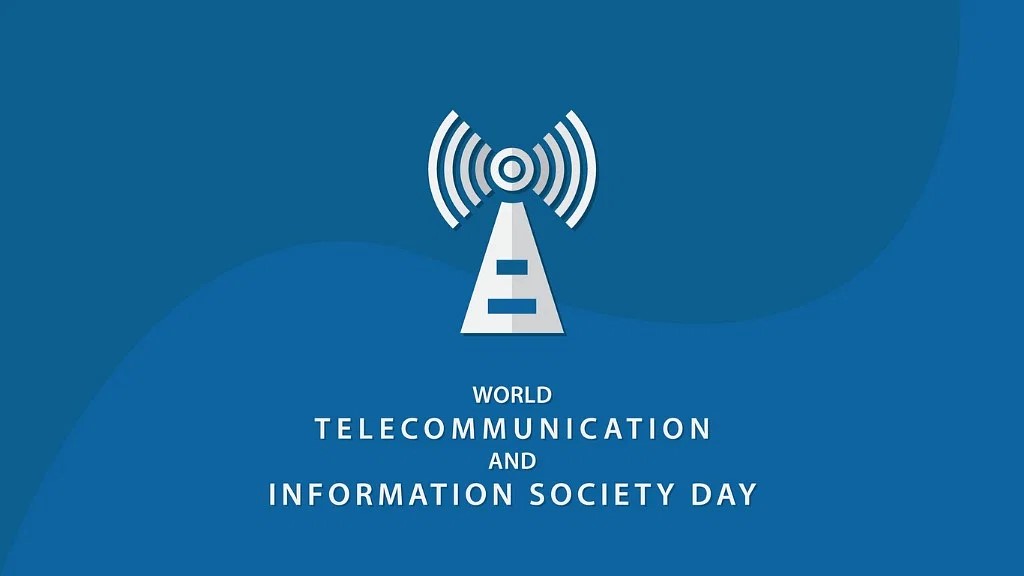
- 18 May 2024
Why is it in the News?
To commemorate the World Telecommunication and Information Society Day, C-DOT, the premier Telecom R&D Centre of the Department of Telecommunications (DoT) celebrates and announces special Initiatives “NIDHI” & “STAR Program” for the development of indigenous telecom solutions & technologies.
What is World Telecommunication and Information Society Day?
- World Telecommunication and Information Society Day (WTISD) is celebrated every year in May to honour the founding of the International Telecommunication Union (ITU) on May 17, 1969.
- The day can be traced back to commemoration of the two significant events in the history of global communication.
- World Telecommunication and Information Society Day (WTISD) commemorates two significant events in the history of global communication.
- Firstly, it marks the founding of the International Telecommunication Union (ITU) in 1865, when the first International Telegraph Convention was signed.
- Followed by, in November 2005, the World Summit on the Information Society (WSIS) called upon the United Nations General Assembly to also declare May 17th as World Information Society Day.
- And then in 2006, the ITU Plenipotentiary Conference in Antalya, Turkey, agreed to combine the two events as World Telecommunication and Information Society Day.
- This year’s World Telecommunications and Information Society Day 2024 focuses on the theme, “Digital Innovation for Sustainable Development,” underlying how digital innovation may help link everyone and create sustainable prosperity for all.
About the International Telecommunication Union (ITU):
- The International Telecommunication Union (ITU) is the United Nations specialized agency for information and communication technologies (ICTs).
- Established in 1865, it is the oldest among the UN’s 15 specialized agencies.
- ITU is responsible for allocating global radio spectrum and satellite orbits, developing technical standards to ensure network interconnectivity, and improving ICT access for underserved communities.
- Headquartered in Geneva, Switzerland, ITU is part of the UN Development Group and operates 12 regional offices worldwide.
- It functions as an intergovernmental public-private partnership with 193 member states and around 800 sector members. India, a member since 1952, was re-elected to the ITU Council for the 2019-2022 term.
Indian Cyber Crime Coordination Centre (I4C)
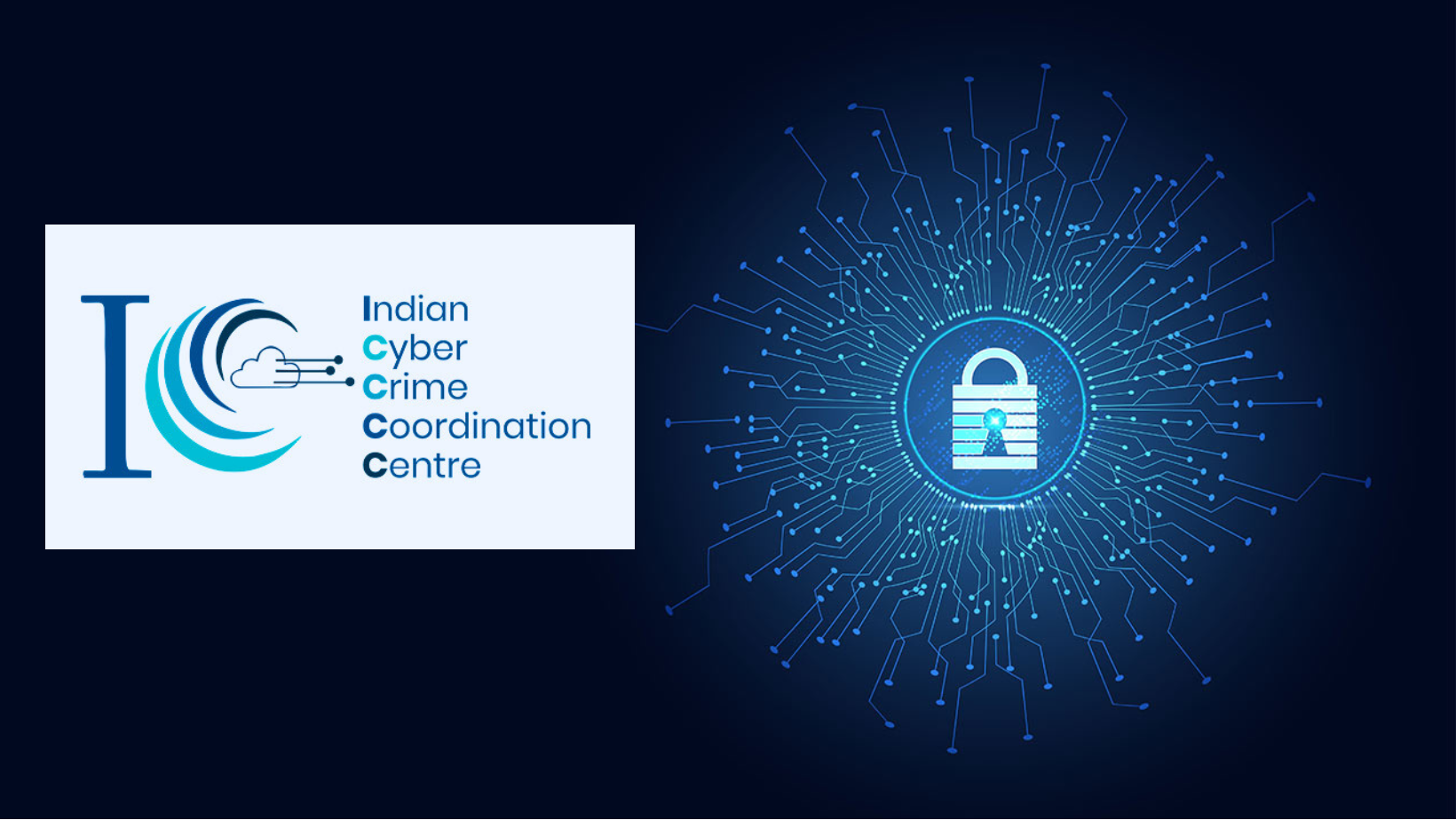
- 15 May 2024
Why is it in the News?
The Indian Cyber Crime Coordination Centre (I4C), in collaboration with Microsoft, has blocked more than 1,000 Skype IDs involved in blackmail, extortion, and “digital arrests” by cybercriminals posing as police and law enforcement authorities.
About Indian Cyber Crime Coordination Centre (I4C):
- The Indian Cyber Crime Coordination Centre (I4C) is a comprehensive initiative to address cybercrime in India.
- It has been established under the Ministry of Home Affairs (MHA) Govt. of India.
- With a focus on improving coordination between various Law Enforcement Agencies (LEAs) and stakeholders, I4C serves as a nodal point in the fight against cybercrime.
- It is located in New Delhi.
Its primary functions include:
- Acting as the central hub for tackling cybercrime and coordinating efforts among LEAs.
- Identifying research needs and collaborating with academia and research institutes within India and abroad to develop new technologies and forensic tools.
- Preventing the misuse of cyberspace by extremist and terrorist groups.
- Suggesting amendments to cyber laws to keep pace with evolving technologies and fostering international cooperation.
- Coordinating activities related to the implementation of Mutual Legal Assistance Treaties (MLAT) with other countries concerning cybercrimes, in consultation with the concerned nodal authority in MHA.
Key Components of the Indian Cyber Crime Coordination Centre (I4C):
- The I4C is comprised of several specialized units designed to tackle various aspects of cybercrime:
- National Cybercrime Threat Analytics Unit (TAU): Regularly reports on cybercrime threats and provides crucial insights to support the nation's cybersecurity efforts.
- National Cybercrime Reporting Portal (NCRP): Offers a unified platform for citizens to report various cybercrime complaints around the clock from anywhere in India.
- National Cybercrime Training Centre (NCTC): Imparts essential training to government officials, primarily focusing on state law enforcement agencies.
- National Cybercrime Research and Innovation Centre: Conducts research and develops indigenous tools for preventing cybercrimes.
- Platform for Joint Cyber Crime Coordination Team: Facilitates coordination, sharing of cybercrime modus operandi, and data/information exchange among state/UT LEAs.
- Cybercrime Ecosystem Management Unit: Focuses on creating mass awareness regarding cyber hygiene and prevention of cybercrimes.
- National Cybercrime Forensic Laboratory (Investigation) Ecosystem: Assists LEAs in cyber forensics investigations.
- In addition to these components, the I4C also fosters collaboration between academia, industry, the public, and government entities in the prevention, detection, investigation, and prosecution of cybercrimes.
- Through the Cyber Crime Volunteers Program, the I4C unites passionate citizens who are committed to serving the nation and contributing to the fight against cybercrime.
Convention on Biological Diversity (CBD)
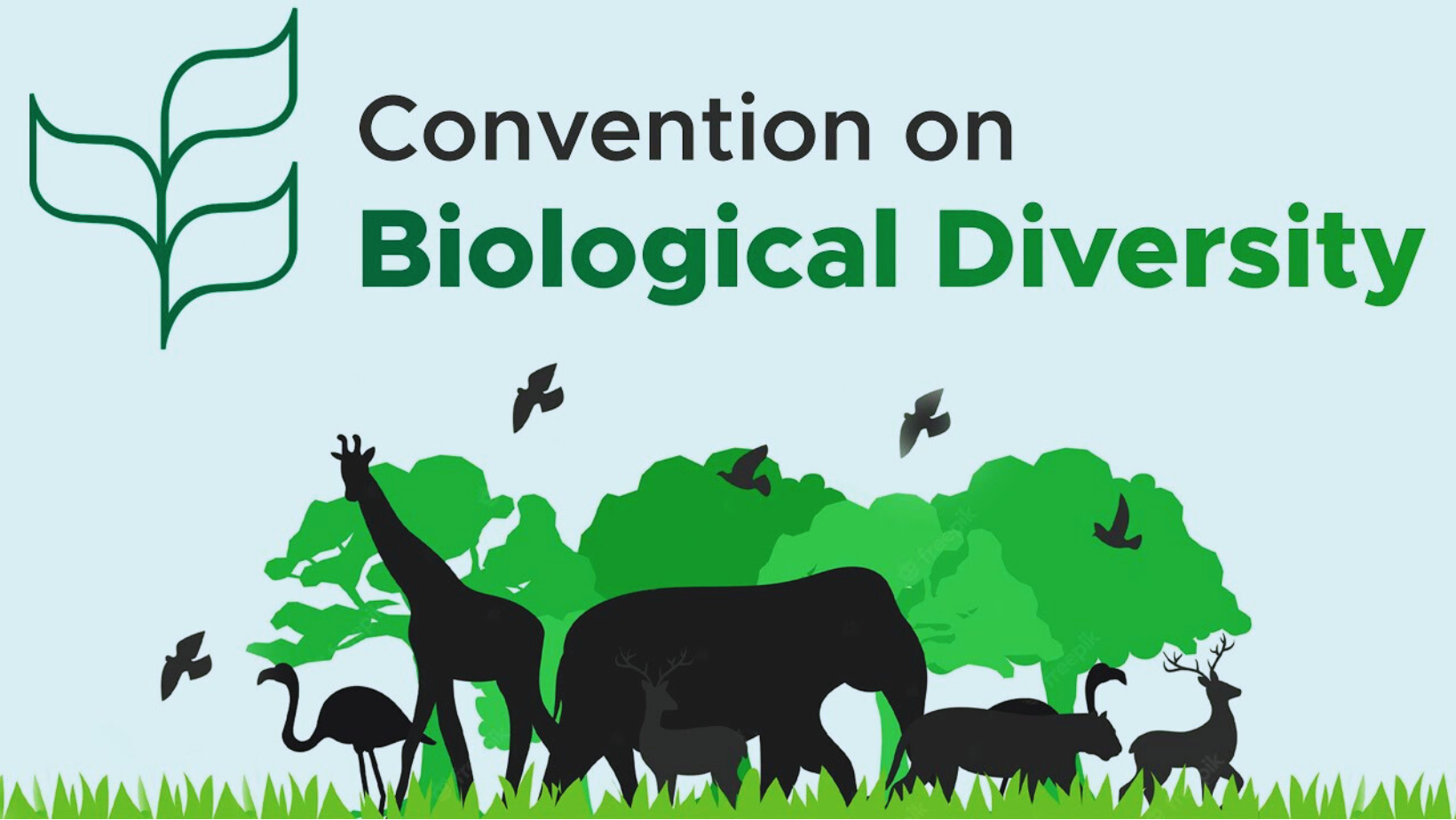
- 14 May 2024
Why is it in the News?
Technical experts from across the world are gathered at the United Nations headquarters in Kenya in preparation for the 16th Conference of Parties to the Convention on Biological Diversity (COP16).
About the Convention on Biological Diversity (CBD):
- The Convention on Biological Diversity (CBD), known informally as the Biodiversity Convention, is a multilateral treaty that has the main objective of developing national strategies for the conservation and sustainable use of biological diversity.
- It is a multilateral treaty established in 1992 at the United Nations Conference on Environment and Development (also known as the Earth Summit) held in Rio de Janeiro, Brazil.
- Signed by 150 government leaders, the Convention on Biological Diversity is dedicated to promoting sustainable development.
- Conceived as a practical tool for translating the principles of Agenda 21 into reality, the Convention recognizes that biological diversity is about more than plants, animals and microorganisms and their ecosystems – it is about people and our need for food security, medicines, fresh air and water, shelter, and a clean and healthy environment in which to live.
The CBD has so far produced two important international agreements:
- The Cartagena Protocol on biosafety entered into force in 2003, seeks to protect the environment from the potential risks of Genetically Modified (GM) organisms.
- The Cartagena Protocol on Biosafety to the Convention on Biological Diversity is an international treaty governing the movements of living modified organisms (LMOs) resulting from modern biotechnology from one country to another.
- It aims to ensure the safe handling, transport, and use of living-modified organisms (LMOs) that may have adverse effects on biological diversity, taking into account human health, especially focusing on transboundary movements.
- The protocol was adopted in January 2000 in Cartagena, Colombia, and entered into force on September 11, 2003.
- The Nagoya Protocol on Access to Genetic Resources entered into force in 2014, aims at sharing the benefits arising from the utilisation of genetic resources in a fair and equitable way.
- The Nagoya Protocol on Access to Genetic Resources and the Fair and Equitable Sharing of Benefits Arising from their Utilization is a supplementary agreement to the Convention on Biological Diversity.
- It provides a legal framework for the fair and equitable sharing of benefits arising from the utilization of genetic resources, with a particular focus on ensuring that benefits are shared with the countries and communities that provide those resources.
- The protocol aims to promote the conservation and sustainable use of biodiversity while also respecting the rights of indigenous and local communities over their traditional knowledge and genetic resources.
- It was adopted in Nagoya, Japan, in 2010 and entered into force in 2014.
- The Conference has also implemented many positive decisions that have contributed to the promotion of environmental integrity and the rights of Indigenous Peoples and Local Communities.
- In 2010, the conference in Nagoya adopted a Strategic Plan for Biodiversity, including the Aichi Biodiversity Targets for the 2011-2020 period.
- The convention provides a framework for member countries to develop national strategies and action plans for the conservation and sustainable use of biological diversity.
- As of now, 196 countries have ratified the convention, making it a widely accepted and crucial international agreement for addressing global environmental issues.
International Bullion Exchange (IIBX)
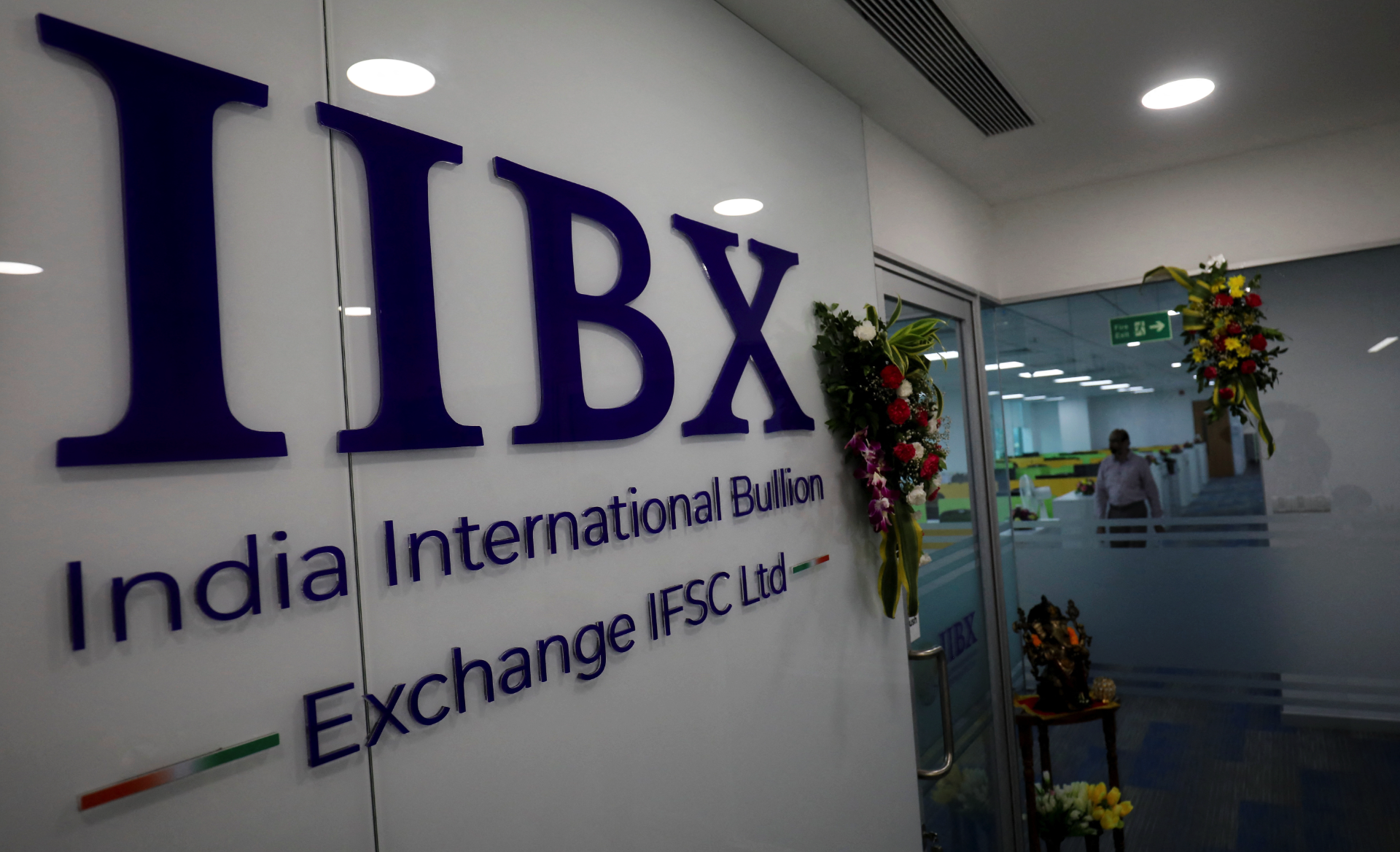
- 14 May 2024
Why is it in the News?
The State Bank of India (SBI) recently announced that it has secured the distinction of being the first bank to become a trading-cum-clearing (TCM) Member of the India International Bullion Exchange at the GIFT City in Gujarat.
What is the International Bullion Exchange (IIBX)?
- India International Bullion Exchange (IIBX) is India's first International Bullion Exchange.
- It is situated within the Gujarat International Finance Tech City (GIFT City) IFSC in Gandhinagar, Gujarat.
- Conceptualized to serve as a premier platform for importing bullion into India, IIBX aims to establish a world-class ecosystem for bullion trading, fostering investment in bullion financial products, and providing top-tier vaulting facilities.
What is Bullion?
- Bullion refers to high-purity physical gold and silver, typically stored in the form of bars, ingots, or coins.
- While sometimes recognized as legal tender, bullion primarily serves as a reserve for central banks and institutional investors.
Key Features:
- Transparent Price Discovery: IIBX prioritizes transparent price discovery mechanisms, ensuring fair and equitable transactions.
- Responsible Sourcing and Supply Chain Integrity: Emphasizing ethical practices, IIBX upholds responsible sourcing and supply chain integrity standards.
- Quality Assurance and Standardization: IIBX maintains rigorous quality assurance protocols and standardized practices to uphold the integrity of traded bullion.
Regulation and Oversight:
- Under the governance of the International Financial Services Centers Authority (IFSCA), IIBX operates under a unified regulatory framework dedicated to the development and oversight of financial products, services, and institutions within IFSCs.
Competitive Advantage:
- Offering a diverse array of products and cutting-edge technology, IIBX provides cost-effective solutions unparalleled by Indian exchanges and global counterparts in major financial hubs like Hong Kong, Singapore, Dubai, London, and New York.
What is the International Financial Services Centers Authority (IFSCA)?
- The International Financial Services Centers Authority (IFSCA) is a regulatory body established in India to oversee and regulate financial products, services, and institutions operating within International Financial Services Centers (IFSCs).
- IFSCA was formed to develop and promote the financial ecosystem within IFSCs, ensuring compliance with international standards and best practices.
- It regulates various entities such as banking, insurance, securities markets, and other financial intermediaries to foster growth and innovation in the financial sector within IFSCs.
- IFSCA's jurisdiction includes Gujarat International Finance Tech City (GIFT City) IFSC in Gandhinagar, Gujarat, which serves as a hub for international financial activities in India.
Xenotransplantation
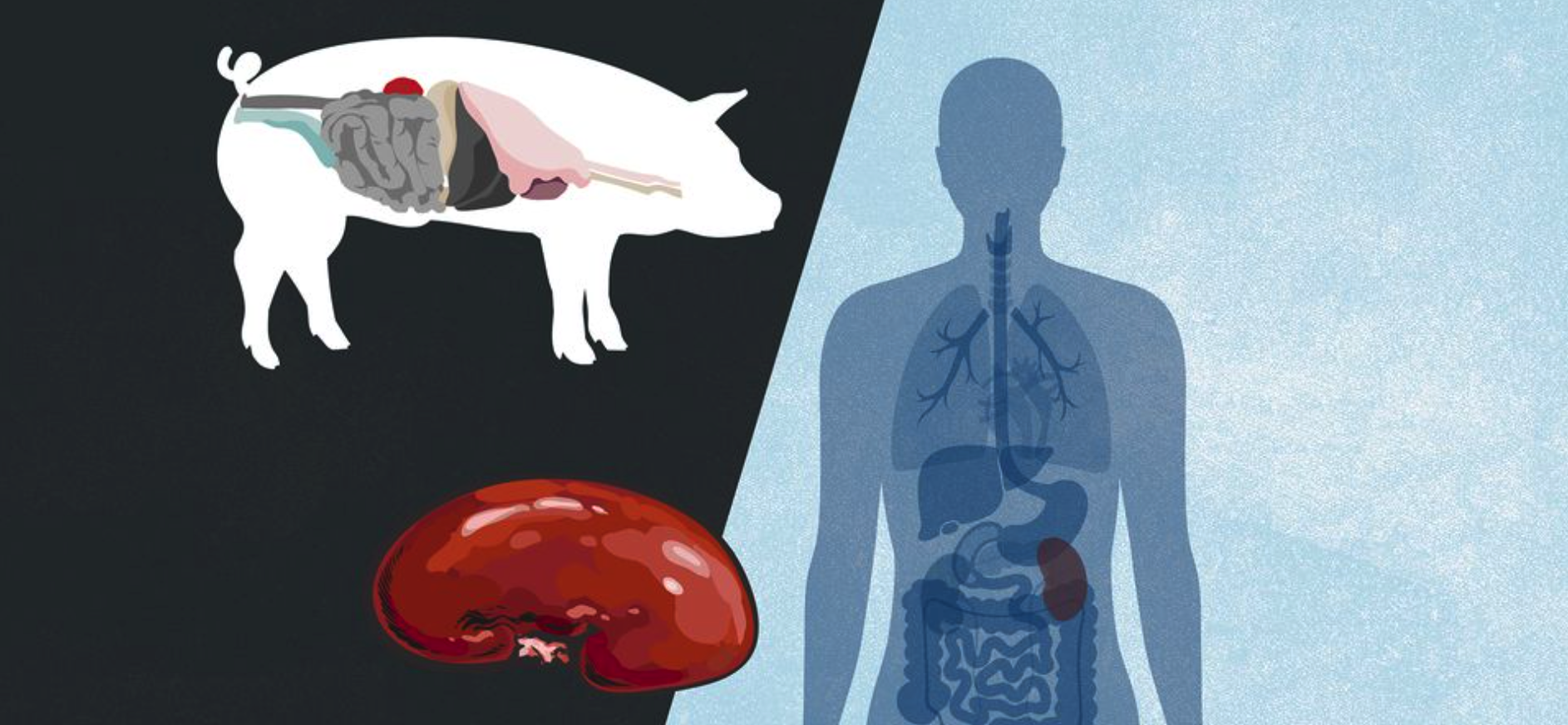
- 13 May 2024
Why is it in the News?
The first recipient of a modified pig kidney transplant passed away recently, around two months after the surgery was carried out.
What is Xenotransplantation?
- Xenotransplantation is the transplantation of organs from different species, such as pigs to humans.
- It is a procedure that involves the transplantation, implantation or infusion into a human recipient of either (a) live cells, tissues, or organs from a nonhuman animal source, or (b) human body fluids, cells, tissues or organs that have had ex vivo contact with live nonhuman animal cells, tissues or organs.
- Essentially, it is the use of animal cells and organs to heal humans.
- Xenotransplantation involving the heart was first tried in humans in the 1980s.
- The need for such a procedure was felt because of the significant gap between the number of transplants needed by patients and the availability of donor organs.
How Does Xenotransplantation Happen?
- The process of implanting a pig kidney into a recipient is akin to a standard transplant procedure, including the use of post-surgery immunosuppressant drugs.
- However, several critical additional steps are involved.
- Firstly, the chosen animal organ undergoes genetic modifications to prevent rejection by the human body.
- Using CRISPR-Cas9 gene editing technology, specific pig genes responsible for producing antibodies reactive to the human immune system are removed. Simultaneously, certain human genes are introduced to enhance the kidney's compatibility with human recipients.
- Even after the surgery, vigilant monitoring is essential to assess the body's response to the transplanted organ.
Why are pigs often used for xenotransplantation?
- Pig heart valves have been used to replace damaged valves in humans for over 50 years now.
- The pig’s anatomical and physiological parameters are similar to those of humans, and the breeding of pigs on farms is widespread and cost-effective.
- Also, many varieties of pig breeds are farmed, which provides an opportunity for the size of the harvested organs to be matched with the specific needs of the human recipient.
What are the Complications of Xenotransplantation?
- Rejection: Despite genetic modifications, the recipient's immune system may still recognize the transplanted organ as foreign and mount an immune response, leading to rejection.
- Infection: Xenotransplantation introduces the risk of transmitting infectious diseases from the donor animal to the recipient, including viruses and bacteria that may not typically affect humans.
- Immunological Challenges: The interaction between the recipient's immune system and the transplanted organ may trigger inflammatory responses, leading to complications such as inflammation and tissue damage.
- Ethical Concerns: Xenotransplantation raises ethical dilemmas related to animal welfare, genetic engineering, and the potential exploitation of animals for human benefit.
- Long-term Health Risks: The long-term effects of xenotransplantation on recipient health, including the development of chronic conditions and the risk of cancer, are still not fully understood and require further research.
Heatstroke

- 11 May 2024
Why is it in the News?
The Union Health Ministry has issued standardised guidelines for confirming heatstroke and heat-related deaths in the country.
What is a Heatstroke?
- Heatstroke, also known as sunstroke, is a medical emergency resulting from the body overheating due to exposure to high temperatures and humidity or prolonged physical exertion in hot conditions.
- Individuals experiencing heat exhaustion may exhibit symptoms such as fatigue, dizziness, headache, nausea, vomiting, low blood pressure, and increased heart rate.
Criteria for Heatstroke:
- Heatstroke is characterized by body temperatures of 40°C (104°F) or higher, accompanied by delirium, seizures, or coma, posing a potentially fatal condition.
Heatstroke Deaths in India:
- According to analysis of data from the National Crime Records Bureau, over 11,000 people in India died due to heatstroke between 2012 and 2021.
Government Initiatives:
- The Health Ministry released a National Action Plan on Heat-Related Illness in July 2021, outlining strategies to address health challenges posed by heat waves.
- The India Cooling Action Plan (ICAP) aims to mitigate heat impacts by ensuring sustainable cooling and thermal comfort for all by 2037-38.
First Aid Measures for Heatstroke:
-
- Move the affected person to a cool, shaded area.
- Offer water or a rehydrating drink if the person is conscious.
- Fan the person to promote cooling.
- Seek medical attention if symptoms worsen, persist, or if the person loses consciousness.
- Avoid giving alcohol, caffeine, or carbonated beverages.
- Apply a cool, wet cloth to the person's face or body.
- Loosen clothing to improve ventilation.
Key Points from the Guidelines:
- Rationale for the Guidelines: Between 2013 and 2022, there was an 85% increase in estimated annual heat-related mortality compared to 1991–2000, driven by global warming and changing demographics.
- Without significant adaptation progress, annual heat-related deaths could surge by 370% by mid-century if global temperatures continue to rise towards 2°C above pre-industrial levels.
- In light of these projections, enhancing our understanding and surveillance of heat-related health issues is imperative.
Preparation and Authorship:
- The guidelines were developed by the National Programme on Climate Change and Human Health (NPCCHH) in collaboration with the National Centre for Disease Control (NCDC).
Objective:
- The guidelines aim to assist hospitals in identifying criteria for categorizing deaths as heat-related or due to heat stroke, promoting evidence-based medical decision-making.
Autopsy Considerations:
- Decisions regarding autopsy should be based on factors such as the circumstances of death, the age of the deceased, and available resources.
- Where feasible, collecting blood, urine, etc., for toxicological examination is recommended, contingent on the condition of the body.
Challenges in Diagnosing Heat-Related Deaths
- Diagnosing heat-related deaths post-mortem presents several challenges, including:
- Frequently unavailable pre-terminal or terminal body temperatures.
- Non-specific autopsy findings vary based on the duration of survival after heat exposure.
- Reliance on-scene investigation for diagnosing hyperthermia, a condition resulting from the body's inability to regulate heat.
- Consideration of circumstances of death and exclusion of alternative causes.
- It's noted that autopsies are not mandatory for heat-related deaths.
Inter-Services Organisations (ISOs) (Command, Control, and Discipline) Act
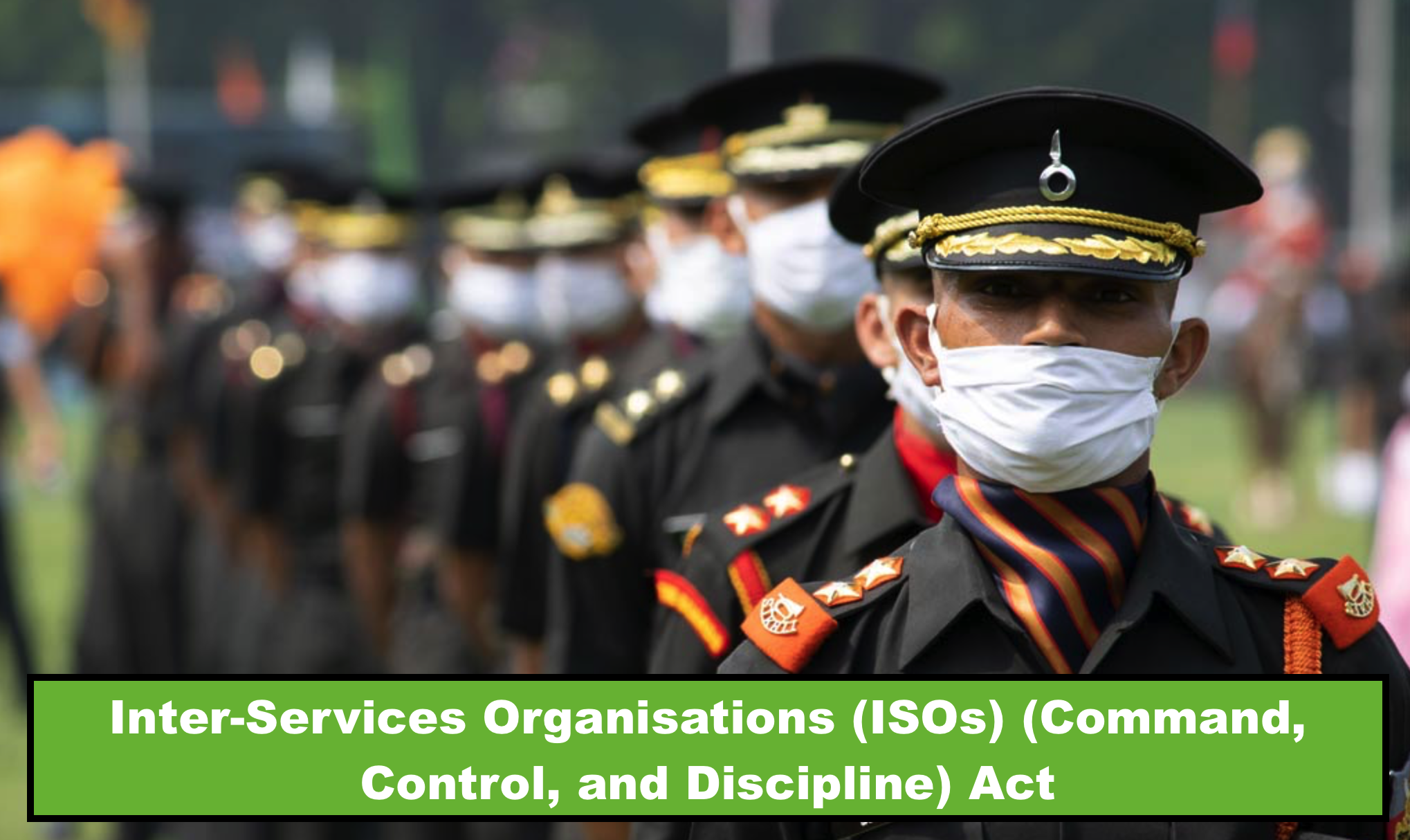
- 11 May 2024
Why is it in the News?
The Inter-Services Organisations (Command, Control and Discipline) Act has been notified in a gazette and has been enforced with effect from May 10, the Defence Ministry said recently.
About Inter-Services Organisations (ISOs) (Command, Control, and Discipline) Act:
- During the Monsoon Session of 2023, both houses of Parliament passed a bill aimed at enhancing the operational efficiency and coordination of Inter-Services Organisations (ISOs).
- These organisations comprise personnel from the Army, Air Force, and Navy, such as joint training institutions like the National Defence Academy, National Defence College (NDC), Defence Services Staff College (DSSC), and the Andaman and Nicobar Command (ANC).
Key Provisions of the ACT:
- Inter-Services Organisation Establishment: Existing Inter-Services Organisations will be considered constituted under the Act.
- The central government may establish an Inter-Services Organisation comprising personnel from at least two of the following services: the Army, Navy, and Air Force.
- Control of Inter-Services Organisations: The Act empowers the Commander-in-Chief or Officer-in-Command of an Inter-Services Organisation to exercise command and control over its personnel.
- They are responsible for maintaining discipline and ensuring the proper discharge of duties by service personnel.
- Supervision of an Inter-Services Organisation will be under the purview of the central government.
- Commander-in-Chief Eligibility: Officers eligible for appointment as Commander-in-Chief or Officer-in-Command include:
- A General Officer of the regular Army (rank above Brigadier),
- A Flag Officer of the Navy (rank of Admiral of the Fleet, Admiral, Vice-Admiral, or Rear-Admiral), or
- An Air Officer of the Air Force (a rank above Group Captain).
- Commanding Officer Appointment: The Act establishes a Commanding Officer responsible for leading a unit, ship, or establishment within the Inter-Services Organisation.
- The Commanding Officer carries out duties assigned by the Commander-in-Chief or Officer-in-Command.
- They have the authority to initiate disciplinary or administrative actions for personnel within the Inter-Services Organisation.
Need for the Act:
- Theaterisation Drive: The enactment aligns with the ongoing push for theaterisation, a vital military reform aimed at optimizing resources for future combat scenarios.
- Existing Framework Challenges: Currently, armed forces personnel are governed by separate laws— the Air Force Act, 1950, the Army Act, 1950, and the Navy Act, 1957—resulting in disjointed disciplinary powers.
- Under the current setup, only officers from the same service possess disciplinary authority over personnel governed by the respective Act, leading to command, control, and discipline challenges.
- Financial Implications: The present framework entails time-consuming processes and financial expenditures for personnel transfers.
- The proposed legislation seeks to remedy these challenges by enhancing discipline enforcement, expediting case resolutions, and potentially saving public funds.
World Migration Report 2024
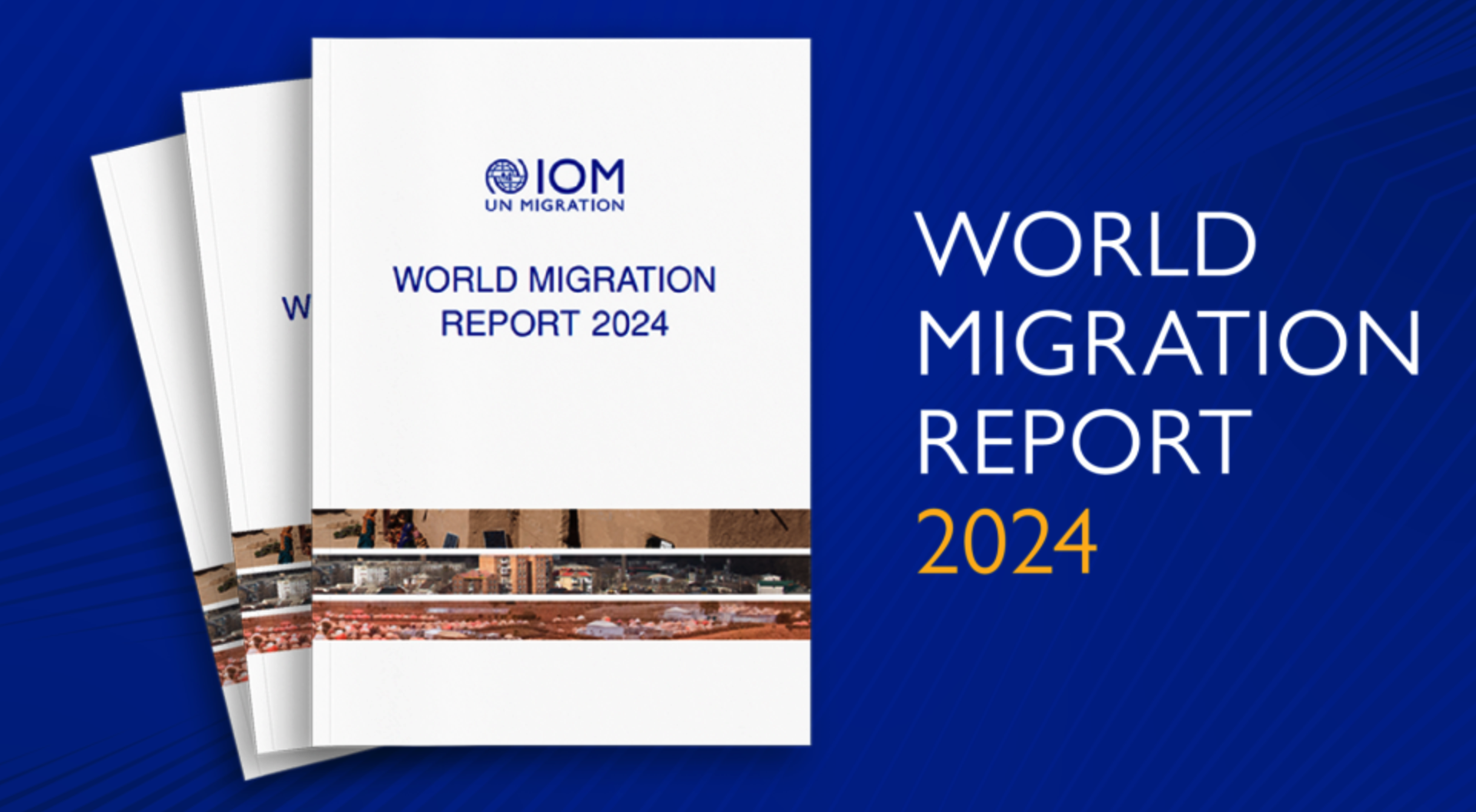
- 10 May 2024
Why is it in the News?
According to the recently released World Migration Report 2024, which is published by the International Organization for Migration (IOM), India has consistently been the top recipient of remittances globally.
Key Highlights of the World Migration Report 2024:
- Resilience Amidst COVID-19: Despite the challenges posed by the COVID-19 pandemic, international migration remains a vital driver of human development and economic progress.
- Notably, there has been a remarkable over 650 per cent surge in international remittances from 2000 to 2022, soaring from USD 128 billion to USD 831 billion.
- This growth defied predictions of a substantial decrease in remittances due to COVID-19.
- Remittances to Low and Middle-income Countries: Out of the total remittances, which amounted to USD 831 billion, a significant portion of USD 647 billion was sent by migrants to low and middle-income countries.
- These remittances play a crucial role in the GDPs of these nations, surpassing foreign direct investment globally.
- Persistent Challenges: While international migration continues to foster human development, the report underscores enduring challenges.
- The global population of international migrants has reached approximately 281 million, while the number of individuals displaced by conflict, violence, disasters, and other factors has surged to a record high of 117 million.
- Urgent action is imperative to address displacement crises effectively.
- Misinformation and Politicization: Despite the fact that most migration is regular, safe, and regionally focused, public discourse has been clouded by misinformation and politicization.
- It is essential to provide a clear and accurate depiction of migration dynamics to counteract this trend.
About the International Organization for Migration (IOM):
- Established in 1951, IOM, the UN Migration Agency, is the leading inter-governmental organization in the field of migration and works closely with governmental, intergovernmental and non-governmental partners.
- IOM works to help ensure the orderly and humane management of migration, promote international cooperation on migration issues, assist in the search for practical solutions to migration problems and provide humanitarian assistance to migrants in need, including refugees and internally displaced people.
- Membership: Currently, IOM counts 175 Member States and 8 states with Observer status.
- India joined as an IOM Member State on June 18, 2008.
- Headquarters: Situated in Geneva, Switzerland, IOM's headquarters serves as a hub for its global operations.
Maillard Reaction

- 10 May 2024
Why is it in the News?
The Maillard Reaction elucidates the intricate chemical processes responsible for the diverse array of flavours, aromas, and textures found in foods.
What is Maillard's Reaction?
- The Maillard reaction is a complex chain of chemical reactions that occurs when heat is exposed to amino acids and reducing sugars.
- The Maillard Reaction, named after the French scientist Louis-Camille Maillard, is a chemical phenomenon observed when amino acids, essential components of proteins, and sugars undergo heating.
- This reaction influences the taste, scent, and consistency of food items.
- It characterizes a non-enzymatic browning process in food, where colour alterations manifest without the involvement of enzymes.
How does the Maillard Reaction Induce Browning in Food?
- The Maillard reaction initiates a complex chemical process that yields various products. Chemist J.E. Hodge first delineated its steps in 1953 to simplify its understanding.
- An array of foods, from meats to bread to vegetables and coffee beans, contain both sugars and protein components.
- When subjected to heat, these sugars and proteins undergo a condensation reaction, forming an unstable compound known as Schiff base.
- This Schiff base undergoes rearrangement and dehydration, yielding diverse intermediate compounds.
- These intermediates further react to generate essential flavour components, enriching the food's aroma.
- Some intermediates undergo rearrangement, resulting in a more stable product. These products serve as vital precursors to melanoidins, pivotal in imparting the food's characteristic brown hue.
- Continued transformation, including condensation and polymerization, culminates in the formation of melanoidins—nitrogen-containing compounds responsible for the food's distinctive brown colouration.
What are the Factors Affecting the Reaction?
- The pace and magnitude of the Maillard reaction hinge on various elements, including temperature, acidity, moisture levels, and the composition of proteins and sugars in the food.
- Optimal Temperature: Temperatures typically fall within the range of 110 to 170 degrees Celsius, with levels surpassing this threshold potentially resulting in food burning and imparting bitter flavours.
- Elevated temperatures generally expedite the reaction, whereas acidic environments and moisture content can impede it.
- Hence, foods tend to brown more rapidly at higher temperatures, and dry items like bread crusts often acquire a rich brown hue during baking.
Non-market Economy Status

- 10 May 2024
Why is it in the News?
Vietnam has been pushing the President Joe Biden administration to quickly change its “non-market economy” classification to “market economy”, in a bid to avoid high taxes imposed by the US on the goods imported from the Southeastern country.
Why does Vietnam Want to Get the ‘Market Economy’ Status?
- Vietnam has argued that in recent years it has implemented enough economic reforms that get its name off the non-market economies list.
- The country does meet a number of criteria for the status to be changed.
- For instance, Vietnam allows foreign investment, wages are determined by free negotiations between workers and management, and most of the means of production are not owned by the state.
- The change in status will also help Vietnam get rid of the anti-dumping duties, making its products more competitive in the US market.
- Vietnam’s Center for WTO and International Trade has said that the method of calculating anti-dumping duties is flawed as it causes “the dumping margin to be pushed up very high” and does not actually reflect the situation of Vietnamese companies.
About Non-market Economy Status:
- Non-market economy status refers to a designation applied to countries by international trade authorities, particularly the World Trade Organization (WTO), based on their economic structure and policies.
- In a non-market economy, the allocation of resources, production decisions, and pricing mechanisms are predominantly influenced by the government rather than by market forces.
- This can include state ownership of key industries, government intervention in setting prices, and restrictions on foreign investment and trade.
- For trade purposes, countries classified as non-market economies may face different treatment in anti-dumping investigations and trade disputes.
- This designation can affect how trade regulations and tariffs are applied to goods originating from these countries.
- The US designates a country as a non-market economy based on several factors which are:
- If the country’s currency is convertible
- If wage rates are determined by free bargaining between labour and management
- If joint ventures or other foreign investments are allowed whether the means of production are owned by the state; and
- If the state controls the allocation of resources and price and output decisions.
- Other factors like human rights are also considered.
- The non-market economy label allows the US to impose “anti-dumping” duties on goods imported from designated countries.
Market Economies:
- Market economies operate based on the interactions between consumers and businesses, guided primarily by the law of supply and demand, rather than by central government policies.
- Theoretical Foundation: Developed by classical economists like Adam Smith, David Ricardo, and Jean-Baptiste Say, market economies emphasize the role of free markets in allocating resources efficiently.
- Modern Market Economies: Often referred to as mixed economies, modern market economies may still involve some government interventions, such as price-fixing, licensing, quotas, and industrial subsidies, but the majority of decisions are market-driven.
- Examples include countries like India, the USA, and the UK, where market forces play a significant role in shaping economic activities.
What is Anti-dumping Duty?
- An anti-dumping duty is a protectionist tariff that a domestic government imposes on foreign imports that it believes are priced below fair market value.
- In order to protect their respective economy, many countries impose duties on products they believe are being dumped in their national market; this is done with the rationale that these products have the potential to undercut local businesses and the local economy.
- While the intention of anti-dumping duties is to save domestic jobs, these tariffs can also lead to higher prices for domestic consumers.
- In the long term, anti-dumping duties can reduce the international competition of domestic companies producing similar goods.
- The World Trade Organization (WTO)–an international organization that deals with the rules of trade between nations–also operates a set of international trade rules, including the international regulation of anti-dumping measures.?
Global Electricity Review 2024

- 09 May 2024
Why is it in the News?
In 2023, India overtook Japan to become the world’s third-highest producer of solar power, according to a report by international energy analytics agency Ember recently.
About Global Electricity Review 2024:
- The Global Electricity Review is published by Ember, a leading climate and energy think tank focused on accelerating the global transition to clean energy.
- The Global Electricity Review 2024 offers an in-depth analysis of the global electricity landscape in 2023.
- Drawing from a vast dataset encompassing 80 countries representing 92% of global electricity demand, and historical data from 215 countries, the report provides a robust and comprehensive examination of the current state of the electricity sector.
- The report's objective is to evaluate the progress made in transitioning the world's electricity systems towards cleaner, low-carbon sources, with a focus on limiting global temperature rise to 1.5 degrees Celsius.
Key Findings from the Report:
- Record Solar Energy Generation: Solar energy accounted for a record 5.5% of global electricity in 2023, solidifying its position as the fastest-growing electricity source for the nineteenth consecutive year.
- Renewables Surge: Renewable sources accounted for 30% of global electricity, marking a significant increase from 19% in 2000. Solar and wind power drove this expansion, with low-carbon sources contributing to nearly 40% of global electricity generation in 2023.
- Fossil Fuel Decline Forecast: The report predicts a decline in fossil fuel generation in 2024 and beyond, indicating a possible peak in global fossil fuel production in 2023.
- China's Dominance: China emerged as a significant contributor to renewable energy, accounting for 51% of the global solar generation increase and 60% of new global wind generation in 2023.
India-Specific Insights from the Report:
- India's Rise in Solar Generation: In 2023, India surpassed Japan to become the world's third-largest solar power generator, climbing from its ninth position in 2015.
- While India's installed solar capacity ranks fifth globally, its rapid growth demonstrates significant progress in harnessing solar energy.
- Share of Solar Energy in India's Electricity Mix: India generated 5.8% of its electricity from solar energy in 2023.
- This substantial contribution highlights the increasing role of solar power in meeting the country's energy demands.
- India's Contribution to Global Solar Growth: India experienced the world's fourth-largest surge in solar generation in 2023, adding 18 TWh to its capacity.
- Alongside China, the United States, and Brazil, India accounted for 75% of global solar growth in that year.
- Solar Generation Growth Since 2015: Global solar generation in 2023 was six times higher than in 2015, with India witnessing a remarkable seventeen-fold increase.
- India's Renewable Energy Target: India has committed to tripling its renewable capacity by 2030, aiming for 500 GW of installed renewable energy capacity.
- This ambitious target will require a significant acceleration in annual capacity additions.
AlphaFold 3
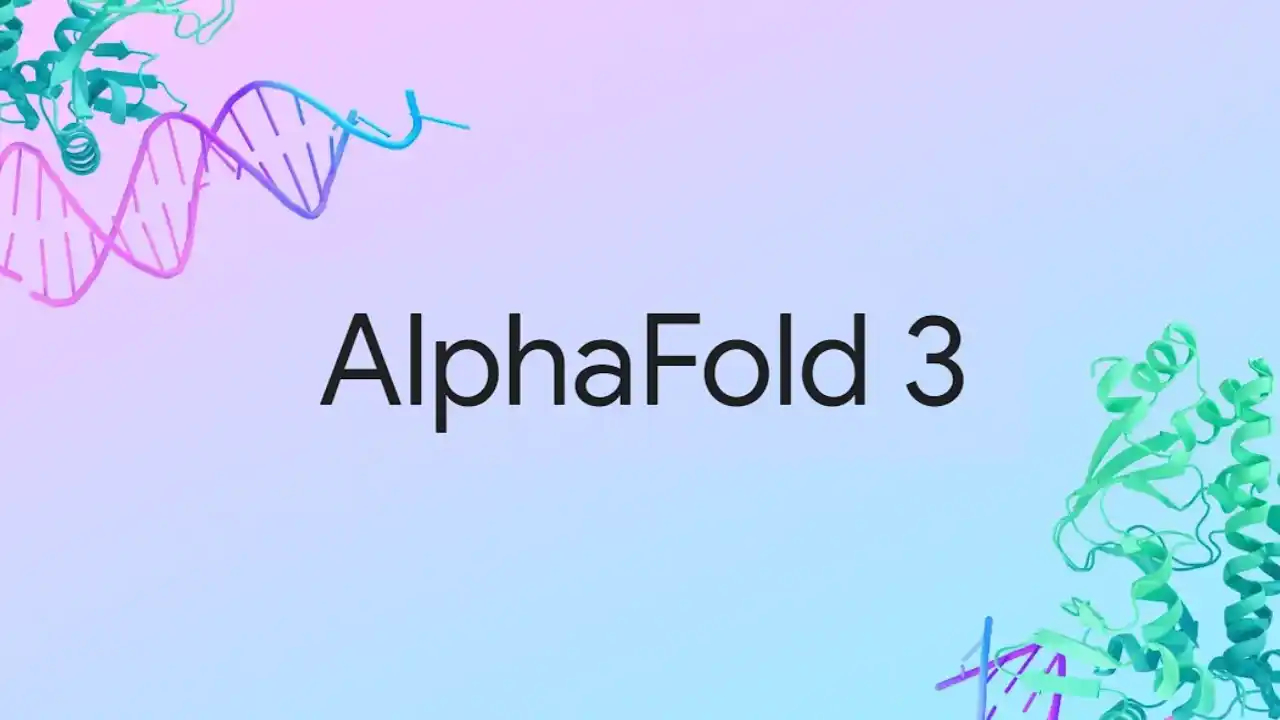
- 09 May 2024
Why is it in the News?
Google Deepmind has unveiled the third major version of its “AlphaFold” artificial intelligence model, designed to help scientists design drugs and target diseases more effectively.
About AlphaFold 3:
- AlphaFold 3 is a major advancement in artificial intelligence created by Google's DeepMind in collaboration with Isomorphic Labs.
- It's essentially a powerful tool that can predict the structures and interactions of various biological molecules such as:
- Predict structures of biomolecules: Unlike previous versions that focused on proteins, AlphaFold 3 can predict the 3D structure of a wide range of molecules, including DNA, RNA, and even small molecules like drugs (ligands).
- This is a significant leap in understanding how these molecules function.
- Model molecular interactions: AlphaFold 3 goes beyond just structure prediction.
- It can also model how these molecules interact with each other, providing valuable insights into cellular processes and disease mechanisms.
The potential applications of AlphaFold 3 are vast. It has the potential to revolutionize fields like:
- Drug discovery: By understanding how drugs interact with their targets, researchers can design more effective medications.
- Genomics research: AlphaFold 3 can help scientists understand the function of genes and how mutations can lead to disease.
- Materials science: By modelling the interactions between molecules, scientists can design new materials with specific properties.
- AlphaFold 3 is a significant breakthrough and is freely available for non-commercial use through AlphaFold Server.
- This makes this powerful tool accessible to researchers around the world, potentially accelerating scientific advancements.
Widal Blood Test
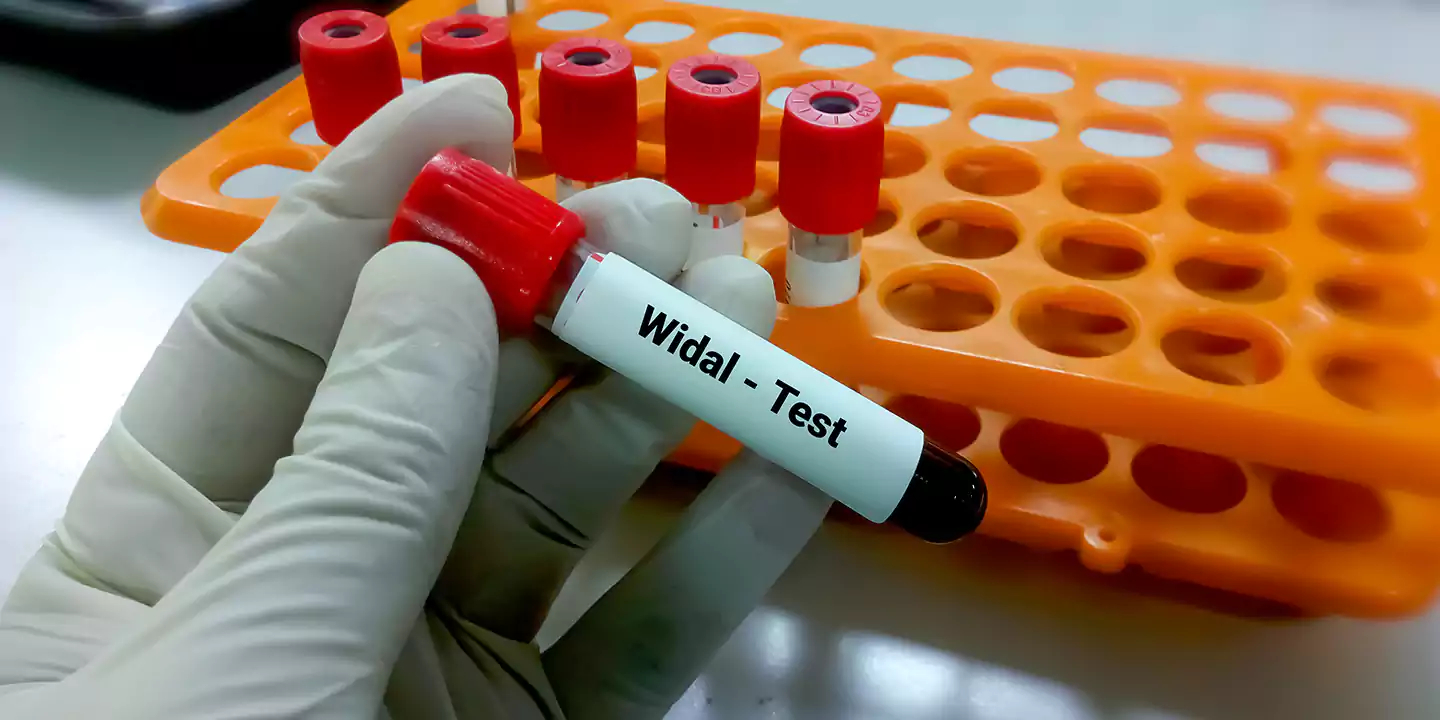
- 09 May 2024
Why is it in the News?
The Widal test's tendency to produce inaccurate results is clouding the understanding of India's typhoid burden, leading to increased costs, and exacerbating antimicrobial resistance risks.
What is the Widal Blood Test?
- A Widal test is a serological diagnostic test for typhoid fever.
- It helps evaluate the level of antibodies produced by the body in response to the Salmonella bacterial infection that causes typhoid fever in patients.
- Widal blood test is also known as a typhoid blood test report, as it is widely used for diagnosing typhoid fever.
- The symptoms of typhoid fever may be similar to those of other diseases, which can make the diagnosis of typhoid difficult without proper testing.
- Typhoid fever is a severe illness caused by a bacterium called Salmonella Typhi.
- This bacterium affects the gastrointestinal system and causes a range of symptoms such as high fever, diarrhoea or constipation, headache, abdominal pain, fatigue, weight loss, and red spots.
- The bacteria usually enter the body through contaminated food or water.
- Typhoid requires prompt treatment to prevent further complications such as severe intestinal perforation or bleeding.
- The Widal blood test is a quick and easy serological test that can help confirm or rule out whether a fever is due to a typhoid infection.
- Typically, typhoid symptoms appear within 6 to 30 days of exposure to the bacterial infection.
- The Widal test is designed to detect antibodies against O (somatic) and H (flagellar) antigens that cause the infection and typhoid fever.
- Infection through these antigens produces specific antibodies in response.
- The Widal blood test analyses the interaction between these two antigens and the antibodies produced in the patient's body through a blood sample.
- Detecting the presence of these antibodies in the Widal blood test indicates a bacterial infection.
- However, it has several limitations and has been phased out in many countries due to its potential for inaccuracy.
- The World Health Organization (WHO) advises against relying heavily on the Widal Test because various factors can influence its results.
- For example, a single positive result does not definitively confirm an active typhoid infection and a negative result does not necessarily rule it out.
- Additionally, obtaining an accurate diagnosis requires testing at least two serum samples taken 7-14 days apart, which can be time-consuming and often impractical.
- In areas with a continuous high burden of typhoid, baseline antibody levels may already be elevated, complicating the interpretation of results without knowing the appropriate cut-off values.
- Furthermore, cross-reactivity with antibodies produced against other infections or vaccinations can lead to false positives.
- Prior antibiotic therapy can also impact antibody levels, resulting in false negatives.
- Despite its accessibility and historical significance, the Widal Test's limitations emphasize the need for more accurate and reliable diagnostic methods for typhoid fever.
West Nile Fever
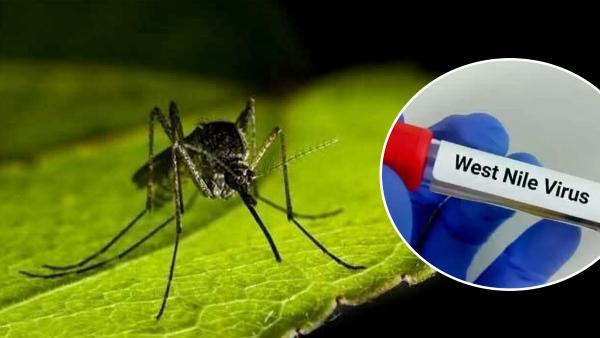
- 08 May 2024
Why is it in the News?
The Kerala health department has issued an alert after cases of West Nile fever were reported in Malappuram, Kozhikode and Thrissur districts.
What is West Nile Fever?
- West Nile Fever is a viral infection transmitted primarily by mosquitoes, caused by the West Nile virus (WNV).
- The virus is commonly found in Africa, Europe, the Middle East, North America, and West Asia.
- Most people infected with the West Nile virus don’t experience any symptoms.
- About 20% of people who become infected with WNV will develop West Nile fever.
- However, for some, particularly the elderly or those with weakened immune systems, symptoms can range from mild flu-like symptoms such as fever, headache, body aches, fatigue etc.
- Transmission occurs when mosquitoes become infected after feeding on infected birds, and then bite humans.
Why is it named West Nile Fever?
- West Nile Virus was first isolated in a woman in the West Nile district of Uganda in 1937.
- According to the World Health Organisation (WHO), It was identified in birds in the Nile Delta region in 1953,
Symptoms:
- West Nile Fever can manifest with a range of symptoms, although the majority of individuals infected with the West Nile virus (WNV) remain asymptomatic.
- For those who do exhibit symptoms, they typically appear within 2 to 14 days after being bitten by an infected mosquito.
- Common symptoms include fever, headache, body aches, and fatigue, which are similar to those of the flu.
- Additionally, individuals may experience nausea, vomiting, diarrhoea, and swollen lymph glands.
- Skin rash and swollen joints are also reported in some cases.
- In more severe instances, West Nile Fever can lead to neurological complications.
- These may include meningitis (inflammation of the membranes surrounding the brain and spinal cord) or encephalitis (inflammation of the brain).
- Signs of neurological involvement may include severe headache, high fever, neck stiffness, disorientation, tremors, seizures, paralysis, and coma.
Treatment:
- While there is no specific treatment for West Nile Fever, supportive care such as pain management, fluids, and rest can help alleviate symptoms and aid recovery.
- Prompt medical attention is crucial, especially for those experiencing neurological symptoms, as these can be life-threatening.
Wildlife Corridors
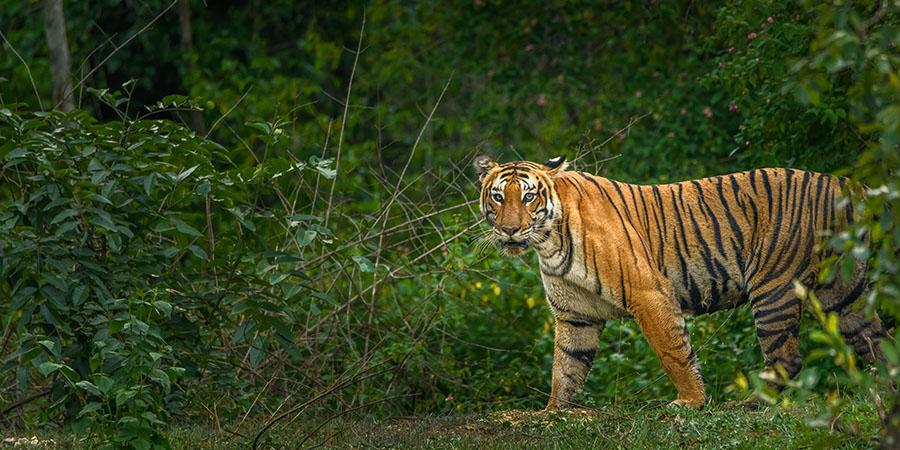
- 07 May 2024
Why is it in the News?
To revive the population of tigers in Sahyadri Tiger Reserve (STR) — the lone tiger reserve in the Maharashtra western region — the state’s forest department will soon translocate tigers from Tadoba-Andhari Tiger Reserve (TATR) in Chandrapur district.
What are Wildlife Corridors?
- Corridors are essentially habitats and pathways that connect wildlife populations, which are fragmented by human settlements and infrastructure works.
- They are crucial for the long-term survival of the tiger population as they help guard against localised extinctions and ensure the exchange of gene flow, which helps in population diversity.
- Tigers have large home ranges and often travel long distances in search of mates and food.
- In doing so, they make use of these wildlife corridors and cross several human-dominated landscapes.
- The role played by corridors in conservation is a well-established one and has been incorporated into policy decisions as well.
- Mitigation measures such as underpasses, and wildlife crossings are now routinely ordered to safeguard tigers and other wildlife in projects where linear infrastructure projects fragment habitats.
- Litigation, advocacy, and policymaking have all contributed to this.
- The construction of an overpass on the National Highway- 7 to protect the migratory route of tigers underneath between the Kanha and Pench Tiger Reserves is one instance of embedding mitigation measures to protect corridors.
- Tigers routinely use the space beneath the elevated stretch of the highway to cross the forests.
- In 2014-15, the National Tiger Conservation Authority and Wildlife Institute of India (WII) mapped 32 major tiger corridors in the country across four broad tiger landscapes – Shivalik Hills and Gangetic plains, Central India and Eastern Ghats, Western Ghats, and the North East Hills.
Is Translocation the Best Approach for Tiger Recovery?
- Tiger translocation projects have been undertaken in India since 2008.
- Sariska Tiger Reserve, in 2008, and Panna Tiger Reserve, in 2009, have witnessed successful tiger reintroduction and translocation projects.
- There have also been failures and shelving of reintroduction plans, like in the case of Satkosia Tiger Reserve in Odisha, which was the country’s first inter-state translocation project.
- However, before choosing translocation, other available options such as habitat improvement, prey augmentation, strengthening of tiger corridors, and vigilance improvement should be assessed.
- Even after translocations, one must ensure that corridors are strengthened and they are free of major disturbances.
- This will ensure the dispersal of tigers to other source population areas.
Sikhs for Justice (SFJ)
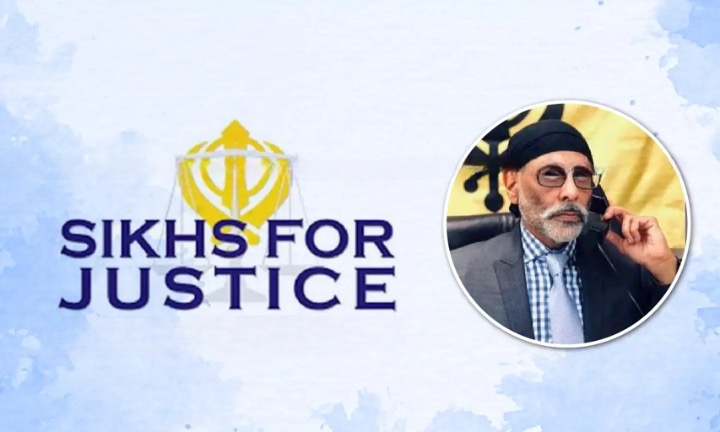
- 07 May 2024
Why is it in the News?
Delhi LG V K Saxena recently recommended a (NIA) probe against jailed Delhi CM Arvind Kejriwal for allegedly receiving political funding from Sikhs for Justice (SFJ), a New York-based pro-Khalistan organisation that is banned in India.
What is Sikhs for Justice (SfJ)?
- Sikhs for Justice (SFJ) formed in 2007, is a US-based group seeking a separate homeland for Sikhs, a “Khalistan” in Punjab.
- Its founder Gurpatwant Singh Pannun, a law graduate from Panjab University and currently an attorney at law in the US, is the face of SFJ and its legal adviser.
- Panun had launched the secessionist Sikh Referendum 2020 campaign, an initiative that eventually became defunct.
- He was among the nine individuals designated as “terrorists” by the Union Ministry of Home Affairs.
- ‘Referendum 2020’, claimed it wanted to “liberate Punjab from Indian occupation”.
- In Pannun’s words, “SFJ in its London Declaration (in August 2018) had announced to hold the first-ever non-binding referendum among the global Sikh community on the question of secession from India and re-establishing Punjab as an independent country.”
Banned in India:
- India refers to Gurpatwant Singh Pannun as a terrorist, and has banned SFJ under the Unlawful Activities (Prevention) Act, 1967.
- The Home Ministry’s 2019 notification issuing the ban says: “In the garb of the so-called referendum for Sikhs, SFJ is actually espousing secessionism and militant ideology in Punjab, while operating from safe havens on foreign soils and actively supported by inimical forces in other countries.”
- Currently, almost a dozen cases are registered against Pannun and SFJ in India.
Air Independent Propulsion (AIP) Technology
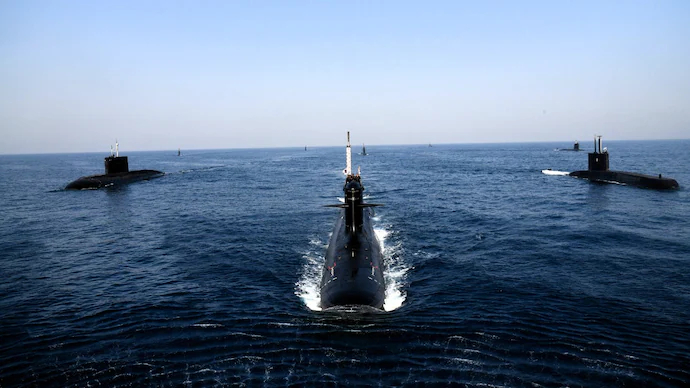
- 06 May 2024
Why is it in the News?
The Indian Navy has initiated trials to modernize its conventional submarine fleet by issuing a Rs 60,000 crore tender for the acquisition of highly advanced submarines equipped with Air Independent Propulsion (AIP) technology.
What is an Air Independent Propulsion (AIP)?
- Air Independent Propulsion (AIP) is a propulsion system used in submarines that allows them to operate underwater for extended periods without the need to surface or snorkel for air.
- Unlike traditional diesel-electric submarines, which rely on diesel engines for surface propulsion and battery-powered electric motors for submerged propulsion, AIP-equipped submarines use a supplementary propulsion system that generates power independently of atmospheric oxygen.
- AIP systems typically employ technologies such as fuel cells, closed-cycle diesel engines, Stirling engines, or other innovative methods to generate electricity or mechanical power for propulsion while submerged.
- Closed Cycle Diesel Engines: These engines use stored liquid oxygen and an inert gas, such as argon, to run the diesel engine while submerged.
- Closed Cycle Steam Turbines: These systems generate steam using stored liquid oxygen and a fuel source, such as diesel or bioethanol, to power a turbine and produce electricity.
- Stirling Cycle Engines: This technology utilizes a closed-cycle heat engine to generate power using a temperature difference between a hot and cold source.
- Fuel Cells: These devices convert chemical energy from a fuel, such as hydrogen, and an oxidizing agent, like stored liquid oxygen, into electrical energy through an electrochemical reaction.
- These systems produce minimal noise and exhaust, allowing submarines to operate quietly and stealthily underwater, making them less vulnerable to detection by sonar and other detection systems.
- The implementation of AIP technology significantly enhances the stealth and endurance capabilities of submarines, enabling them to conduct longer-duration covert missions and remain submerged for extended periods, thereby enhancing their overall operational effectiveness.
- The Defence Research and Development Organisation (DRDO) is pioneering fuel cell-based AIP systems, unique for their hydrogen generation capabilities.
- Developed by the Naval Materials Research Laboratory (NMRL) of DRDO, these systems offer flexibility in operation modes to meet diverse user requirements.
Shaksgam Valley
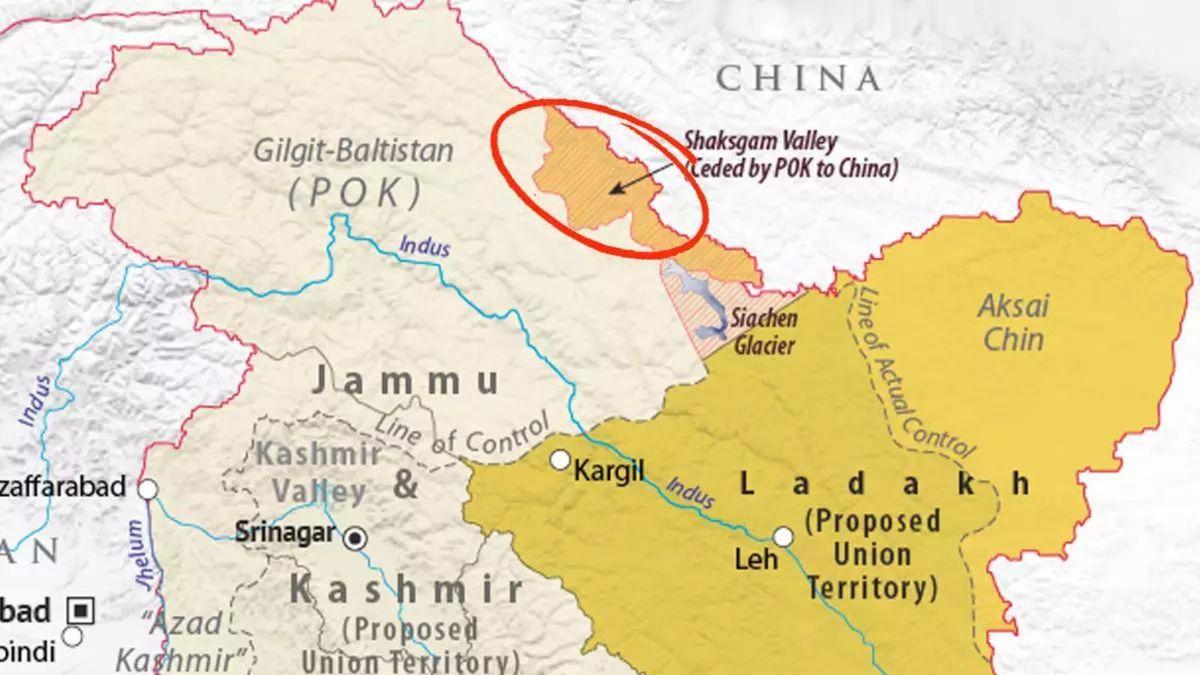
- 03 May 2024
Why is it in the News?
India recently said it has lodged a strong protest with China for carrying out construction activities in the Shaksgam Valley in an "illegal" attempt to alter the situation on the ground.
Context:
- Recently, the Ministry of External Affairs (MEA) said that the Shaksgam Valley is a part of the territory of India amid reports of China building infrastructure in the valley.
- The Shaksgam Valley strategically located region that is now part of Pakistan-occupied Kashmir.
- MEA spokesperson Randhir Jaiswal recently said that India "never accepted the so-called China-Pakistan Boundary Agreement of 1963 through which Pakistan unlawfully attempted to cede the area to China".
- Lodging a strong protest with China for carrying out construction activities, India called it an "illegal" attempt to alter the situation on the ground.
Where is the Shaksgam Valley Located?
- The Shaksgam Valley, or the Trans Karakoram Tract, is part of the Hunza-Gilgit Region of PoK.
- It is bordered by the Xinjiang Province of the People's Republic of China to the north.
- The northern areas of PoK are to its west and south.
- And the Siachen Glacier region to the east.
How did Pakistan cede Shaksgam valley to China?
- In 1963, Pakistan ceded the Shaksgam Valley to China when it signed a border agreement with Beijing to settle their border disputes.
- But, Article 6 of the 1963 agreement clearly stated that “the two Parties have agreed that after the settlement of the Kashmir dispute between Pakistan and India, the sovereign authority concerned will reopen negotiations with the Government of the People's Republic of China, on the boundary as described in Article 2 of the present Agreement, to sign a formal Boundary Treaty to replace the present agreement.”
- The agreement laid the basis for the construction of the Karakoram Highway, which was jointly built by Chinese and Pakistani engineers during the 1970s.
What is the History of Shaksgam Valley?
- When the British asked the Mir of Hunza, a vassal of the Maharaja of Kashmir, to give up his rights to the Taghdumbash Pamirs and the Raskam valley in 1936, the Shaksgam valley to the south-west had remained in his possession.
- This remained the traditional frontier of British India until independence and was inherited by India following Jammu & Kashmir's accession in 1947.
- And, this was the border that Pakistan compromised in its 1963 agreement with China.
- Pakistan established diplomatic relations with the People's Republic of China in 1951.
- Back then, Pakistan was viewed as a member of the non-Soviet block due to its membership in two anti-communist military pacts -- SEATO and CENTO -- led by the United States.
- China was on the opposite side.
- After Chinese troops invaded Tibet in 1950, Pakistan even offered transit facilities to US aircraft so they could supply equipment to Tibetan rebels.
- Chinese troops began to cross the border in eastern Hunza after the Partition of India.
- This started in 1953 and in 1959 they took some livestock out of the area.
- This prompted a furious response from Pakistan, which was determined to protect its borders.
- The then President of Pakistan, Ayub Khan, however, saw an opportunity to appease the Chinese in the late 1950s as India-China relations were rapidly deteriorating.
- Subsequently, Beijing developed closer ties with Islamabad after the India-China War of 1962.
- China went on to support Pakistan diplomatically during the 1965 India-Pakistan war.
- Amid these developments, Pakistan chose to downgrade historical claims made by the Mir of Hunza and signed over the Shaksgam Valley to China in 1963.
What was the Consequence?
- In granting China's claim to a border along the Karakoram Range, Pakistan compromised India's traditional frontier along the KunLun Range to the northwest of the Karakoram Pass.
- It also allowed China to extend a claim eastward along the Karakoram in Ladakh.
- This enabled China to claim all of Aksai-Chin.
Electrolysers

- 03 May 2024
Why is it in the News?
Developing a domestic manufacturing infrastructure for electrolyzers is expected to reduce the cost of green hydrogen and strengthen India's competitive advantage.
What are Electrolysers?
- Electrolysers are devices that produce hydrogen through a chemical process called electrolysis, which splits water molecules into hydrogen and oxygen molecules using electricity.
How do They work?
- These devices consist of a stack of conductive electrodes separated by a membrane, to which a high voltage and current are applied.
- This induces an electric current in the water, causing it to decompose into its constituents: hydrogen and oxygen.
- The generated oxygen is either released into the atmosphere or stored for future use as a medical or industrial gas.
- The hydrogen produced can be stored as a compressed gas liquefied for industrial use or utilised in hydrogen fuel cells, which power various transportation vehicles like trains, ships, and aircraft.
Types of Electrolysers:
- Alkaline Electrolysers: This technology, predominantly used by the fertiliser and chlorine industries, employs thick membranes and nickel-based electrodes.
- It currently represents a significant portion of global electrolyser capacity.
- Proton Exchange Membrane (PEM) Electrolysers: Operating at high pressure, PEM electrolysers utilise thin perfluorosulfonic acid (PFSA) membranes.
- Though they require gold and titanium-plated electrodes and catalysts like platinum, iridium, and ruthenium, they produce high-purity hydrogen and are easy to cool, making them a popular choice.
- Solid Oxide Electrolysis Cell (SOEC) Electrolysers: These devices utilise heat to produce hydrogen from steam and are ideal for locations with available heat sources such as nuclear or industrial facilities.
- Operating at high temperatures ranging from 500 to 850 degrees Celsius.
- Anion Exchange Membrane (AEM) Electrolysers: Operating at significantly lower temperatures of 50 to 60 degrees Celsius, AEM electrolysers combine the less harsh conditions of alkaline electrolysers with the simplicity and high efficiency of PEM electrolysers.
Electrolyzers and Green Hydrogen Production:
- Green hydrogen is renewable hydrogen produced using water electrolysis technology and electricity generated from renewable energy sources, such as solar or wind.
- It is gaining unprecedented momentum globally, and it is believed that it is a key component in accelerating the shift to clean energy.
- The commercialization of electrolyzers can make green hydrogen more readily available and enable energy systems across the globe to undergo fundamental transformations to lower emissions and reduce their negative impact on the environment.
Five Eyes Intelligence-sharing Network
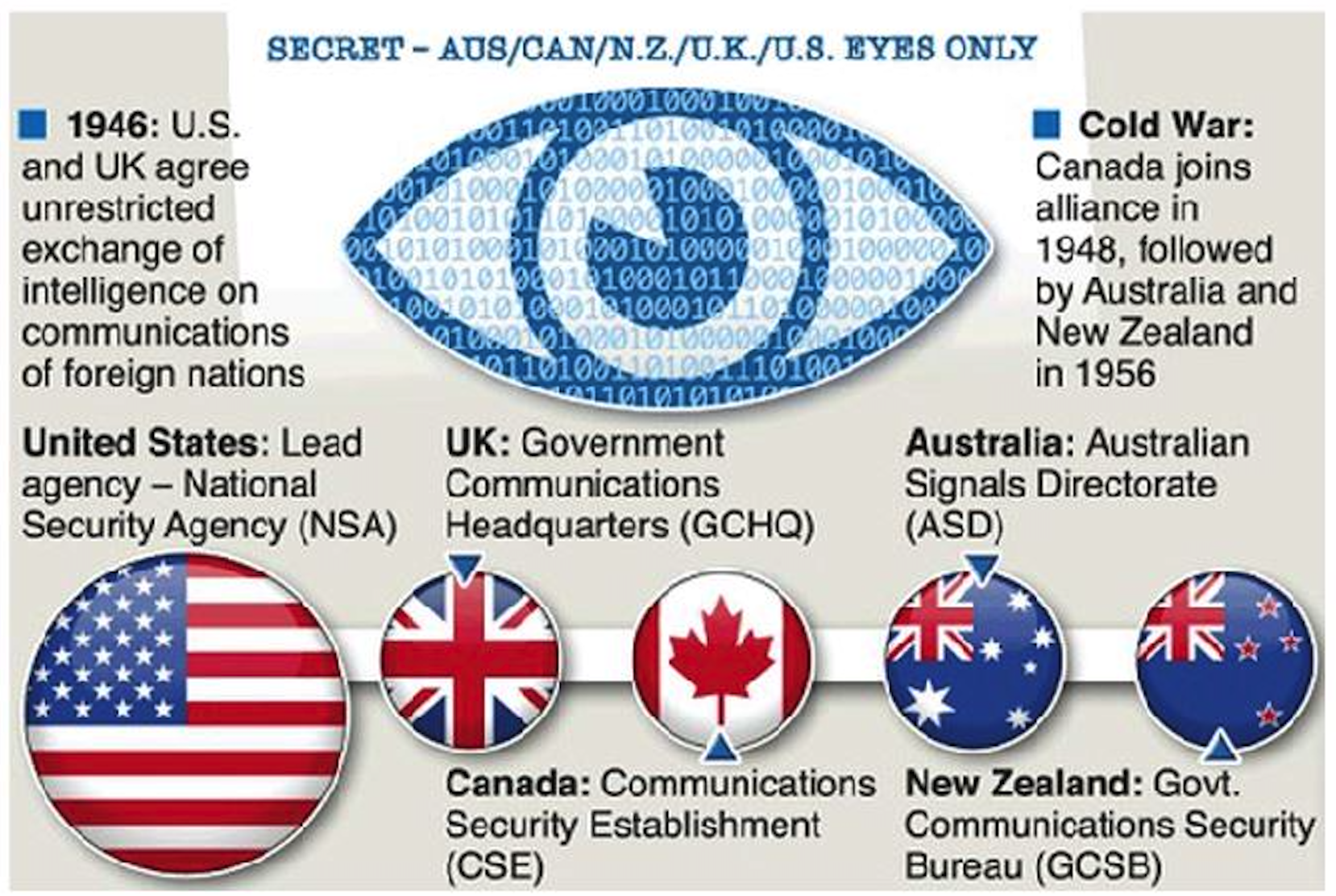
- 03 May 2024
Why is it in the News?
Recently, the Australian Broadcasting Corporation (ABC) reported that “Indian spies” had been “kicked out of Australia” after being caught trying to steal secrets about sensitive defence projects and airport security, as well as classified information on Australia’s trade relationships”.
What is the Five Eyes?
- The Five Eyes is an intelligence alliance comprising Australia, Canada, New Zealand, the United Kingdom and the United States, formed in 1946.
- The alliance is based on a series of bilateral agreements on surveillance and intelligence-sharing.
- These arrangements are commonly known as the United Kingdom-United States Communication Intelligence Act (UKUSA) agreement.
- The UKUSA agreement is a secret pact that, since 1946, has allowed the two countries to share intelligence with each other.
- The UKUSA agreement was so secret that its existence wasn't even acknowledged until 2005.
- Each of the Five Eyes states pursues interception, collection, and decryption activities and shares all intelligence information obtained with the others by default.
- These countries share information with each other through the ultra-sensitive STONEGHOST network, which has been claimed to contain "some of the Western world's most closely guarded secrets".
- The Five Eyes states share integrated programmes, staff, and bases.
Origins of the Five Eyes
- During World War II, informal secret meetings between British and American code-breakers laid the groundwork for establishing the FE alliance.
- After the Cold War, the information-sharing arrangement became formalised under the ECHELON surveillance system in the 1960s.
How does the Five Eyes Alliance operate?
- The alliance facilitates the sharing of signals intelligence among the five countries.
- The countries agree to exchange by default all signals intelligence they gather.
- The bedrock of the Five Eyes Alliance is based on the joint abilities of the United Kingdom's Government Communications Headquarters (GCHQ) and the USA's National Security Agency (NSA) to intercept intelligence.
- These agencies collect and decrypt signal intelligence, called SigInt, which involves internet, telephone, radio and satellite data from across the world.
- The UKUSA Agreement, which was made public in 2010, states:
- "It will be contrary to this agreement to reveal its existence to any third party whatsoever" and "each party will seek the agreement of the other to any action with third parties and will take no action until its advisability is agreed upon."
Booker Prize

- 02 May 2024
Why is it in the News?
The Booker Prize, one of the most prestigious awards in the literary world, has recently come under fire for the historical links to slavery of its original sponsor, Booker Group.
What is the Booker Prize?
- The Booker Prize was founded in 1969, initially just for writers from the Commonwealth, but later opened to writers globally.
- Each year, the prize is awarded to a single work of fiction in the English language.
- In 2004, a separate International Booker Prize was instituted for translated works.
- The prize was co-founded by publishers Tom Maschler and Graham C Greene, and from 1969 to 2001, it was sponsored by, and named after Booker Group Ltd, a British wholesale foods company, established in 1835 as a shipping and trading company, and now owned by Tesco.
- In 2002, British investment management firm Man Group became the prize’s sponsor, and thus it came to be known as The Man Booker Prize.
- After Man Group ended its sponsorship in 2019, American charity Crankstart took over, and reverted the award’s name to its original ‘Booker Prize’.
- Irish author Paul Lynch wins the 2023 Booker Prize for his novel 'Prophet Song'.
About the International Booker Prize:
- The International Booker Prize (formerly known as the Man Booker International Prize) was launched in 2005.
- It was originally awarded every two years to a living author who has published fiction either originally in English or whose work is generally available in translation in the English language.
- It was an award for the body of work of the author, rather than awarded for an individual novel.
- Beginning in 2016, the award changed. It is now given annually to a single book in English translation, with a £50,000 prize for the winning title, shared equally between author and translator.
- Georgi Gospodinov and Angela Rodel have won the International Booker Prize 2023 for the novel ‘Time Shelter’.
- ‘Tomb of Sand’ Geetanjali Shree, translated by Daisy Rockwell Winner 2022 winner.
Nutrient-based Subsidy
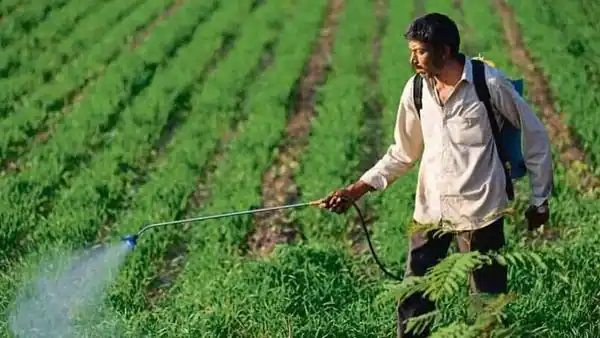
- 01 May 2024
Why is it in the News?
Capping consumption of urea and DAP to correct worsening plant nutrient imbalance is likely to be on the priority list of the government post the Lok Sabha polls.
What is Meant by the Term "Balanced Fertilization"?
- Fertilisers are basically food for crops, containing nutrients necessary for plant growth and grain yields.
- Balanced fertilisation means supplying these primary (N, phosphorus-P, and potassium-K), secondary (sulphur-S, calcium, magnesium), and micro (iron, zinc, copper, manganese, boron, molybdenum) nutrients in the right proportion, based on soil type and the crop’s own requirement at different growth stages.
What is a Nutrient-based Subsidy?
- Nutrient-based subsidy (NBS) is a system started in 2010 to help farmers use the right amount of nutrients in fertilizers.
- Instead of giving a subsidy for each type of fertilizer, the government decided to give subsidies based on nutrients like Nitrogen (N), Phosphorus (P), Potassium (K), and Sulfur (S) in the fertilizers.
- The idea was to encourage farmers to use fertilizers with a balanced mix of nutrients, instead of just focusing on certain types like urea, DAP, and MOP.
- These balanced fertilizers contain a mix of N, P, K, S, and other nutrients in the right amounts.
- At first, this plan seemed to work. Between 2010 and 2012, farmers started using more balanced fertilizers and less of the ones with just one or two nutrients.
- But there was a problem: urea, which is heavily used by farmers, was not included in this plan.
- Since the government controlled the price of urea and only went up a little bit after the NBS was introduced, farmers kept using it more and more.
- This means that even though the NBS helped with other fertilizers, it didn't do much to reduce the use of urea.
Challenges:
- The challenges arise from recent changes in fertilizer pricing and consumption patterns.
- Earlier, companies set prices for non-urea fertilizers, with the government providing subsidies based on their nutrient content.
- However, in the past few years, even non-urea fertilizers have come under price control, especially since January 2024, possibly due to upcoming elections.
- This shift has led to imbalances in nutrient usage.
- For example, the current price of DAP is lower than certain NPKS complex fertilizers, even though it contains less nitrogen and phosphorus.
- As a result, farmers tend to overuse DAP, similar to urea. On the other hand, the price of MOP does not incentivize its use, leading to its reduced incorporation into fertilizers, despite its importance for crop immunity and nitrogen uptake.
- To address these issues, it's crucial to establish a proper price hierarchy among non-urea fertilizers.
- DAP should be priced highest, followed by complexes, with MOP priced the lowest. Additionally, DAP usage should be limited to rice and wheat, while other crops can fulfil their phosphorus needs through complexes and SSP.
- Improving the acceptability of SSP, despite its lower price, can be achieved by marketing it in granular form, which is less prone to adulteration and ensures a slower release of phosphorus without drift during application.
Goldman Environmental Prize

- 01 May 2024
Why is it in the News?
Chhattisgarh-based environment and forest activist Alok Shukla has been honoured with the prestigious Goldman Environmental Prize for his efforts and exemplary community campaign in safeguarding the biodiversity-rich forests in the mineral-rich state.
About Goldman Environmental Prize:
- The Goldman Environmental Prize recognizes grassroots environmental heroes from roughly the world’s six inhabited continental regions:
- Africa
- Asia
- Europe
- Islands & Island Nations
- North America
- South & Central America
- It is also called the Green Nobel.
- The Prize recognizes individuals for sustained and significant efforts to protect and enhance the natural environment, often at great personal risk.
- The Goldman Prize views “grassroots” leaders as those involved in local efforts, where positive change is created through community or citizen participation.
- Through recognizing these individual leaders, the Prize seeks to inspire other ordinary people to take extraordinary actions to protect the natural world.
History:
- Reflecting a lifetime commitment to philanthropy and environmental issues, the Goldman Environmental Prize was founded in 1989 by Richard and Rhoda Goldman.
- The duo envisioned the Prize as a way to demonstrate the international nature of environmental problems and draw public attention to the global need for action.
- By rewarding ordinary individuals for their outstanding environmental achievements, the Goldmans hoped to inspire others to emulate the examples set by the Prize recipients.
- The first Goldman Environmental Prize ceremony took place on April 16, 1990, and it was timed to coincide with Earth Day.
- The recipients of the Goldman Environmental Prize are announced annually in a live ceremony timed to coincide with Earth Day.
- The Prize is awarded in the city of San Francisco, California.
- Prize winners each receive a bronze sculpture in the shape of an Ouroboros.
- Common to many cultures around the world, the Ouroboros, which depicts a serpent biting its tail, is a symbol of nature’s power of renewal.
Patachitra Painting
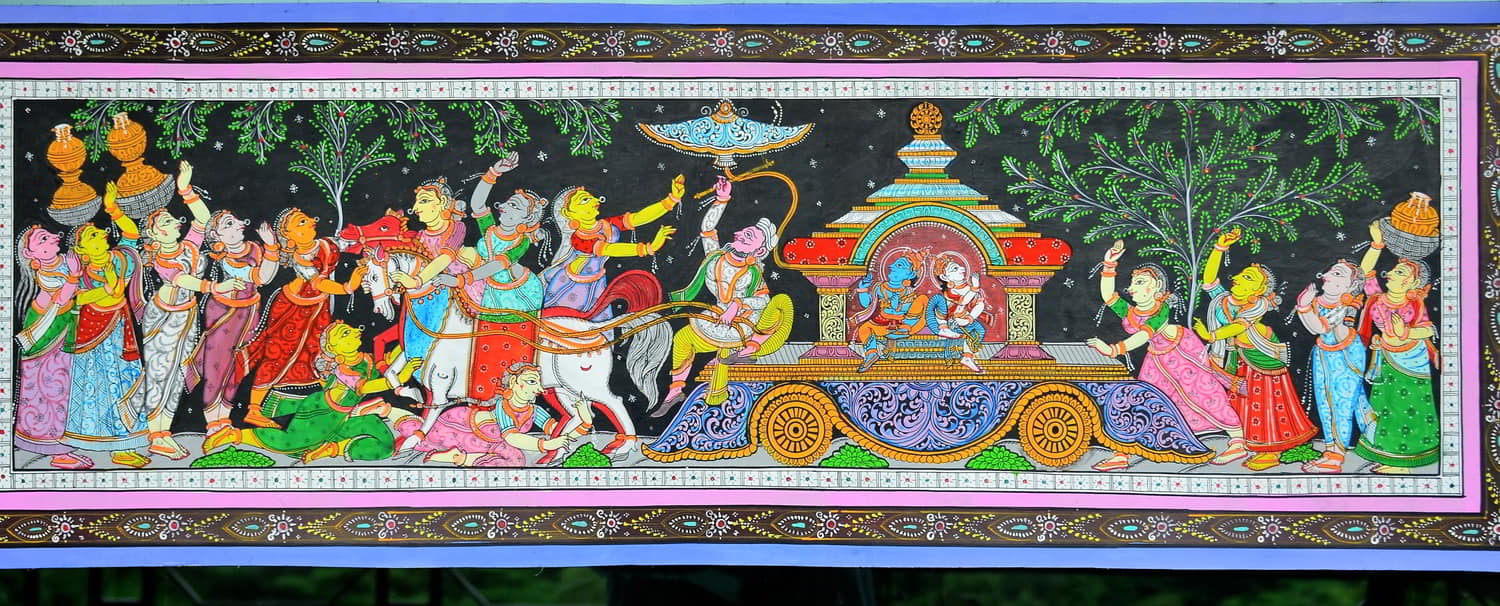
- 01 May 2024
Why is it in the News?
The first-generation women patachitra artists of the village sell their work online & are recognized the world over, encouraging future generations to stay in the profession.
About Patachitra Painting:
- Pattachitra style of painting is one of the oldest and most popular folk art forms of Odisha.
- Pattachitra- literally meaning ‘Picture on cloth canvas’ is a traditional treasure that has mesmerized the common man.
- The Patachitras, the intricate and artistic folk art, of Orissa are icon paintings that include wall paintings, manuscript paintings, palm-leaf etchings, and paintings on cloth, both cotton and silk.
- Pattachitra paintings are made of tussar silk.
- The origin of the paintings is traced to the 8th century A.D., from the fragmented pieces of evidence of cave paintings in Khandagari, Udaigiri, and Sitabhinji.
- Having a reference in the earliest known treatise on a painting called ‘Chitralakshana’, this art form finds its strong roots in the traditions of Lord Jagannath, the presiding deity of Odisha.
- These paintings have a ritualistic significance even to this day.
- The picturesque village of Raghurajpur, on the banks of river Bhargavi is well known for this artistry, along with its neighbours Puri, Dandasahi, and Khasposak.
- The Pattachitra artists are called ‘Chitrakaars’ (Painters), mainly belonging to the Maharana and Mahapatra castes.
- The creation of the Pattachitra paintings is a disciplined art form, and the chitrakars maintain rigidity in their use of colours and patterns, restricting the colours to a single tone.
Making of Paintings:
- Preparing the paints is perhaps the most important part of the creation of Pattachitra, engaging the craftsmanship of the chitrakars in using naturally available raw materials to bring about indigenous paints.
- The gum of the Katha tree is the chief ingredient and is used as a base for making different pigments, on which diverse raw materials are mixed for diverse colours.
- Powdered conch shells, for instance, are used for making a white pigment, while lamp soot is used for a black pigment.
- The root of the keya plant is usually used for making the common brush, while mouse hair is used on the requirement of finer brushes, to be attached to wooden handles.
'Egg Shell Skull' Rule
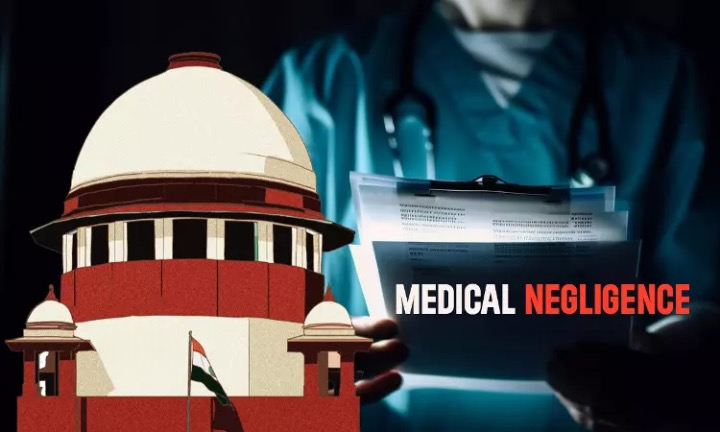
- 30 Apr 2024
Why is it in the News?
Underlining that the state and central consumer courts incorrectly applied the ‘eggshell skull’ legal principle, the Supreme Court recently restored the compensation of Rs 5 lakhs awarded by the district consumer forum in a medical negligence case.
What is the ‘Eggshell Skull’ Rule?
- The eggshell skull rule is a common law principle applied in civil litigation.
- Essentially, when the offender would be liable for all injuries that might be intensified due to the peculiar conditions of the injured person that the offender might not have known.
- Simply put, the defendant would be held responsible for injuries caused to a person when he hit him on the head, even if the victim had a particularly delicate skull or an ‘eggshell’ for a skull.
- A person who has an eggshell skull would be more severely impacted by an act, which an otherwise “normal person” would be able to withstand.
- The rule is applied for claiming an enhanced compensation, for damage that is more than what could have been ordinarily anticipated to be caused by the defendant.
Origin of the ‘Eggshell Skull’ Rule:
- The 'eggshell skull' rule, also known as the 'thin skull rule,' is a legal doctrine that holds a defendant liable for all consequences resulting from their negligent or intentional actions, even if the victim's pre-existing vulnerability worsens the outcome.
- The rule's origins can be traced back to an 1891 US case, Vosburg v. Putney, in which a boy kicked another's shin without knowing about his prior injury, leading to complications.
- The Wisconsin Supreme Court held that the defendant was responsible for the subsequent harm, even though he did not intend to cause such severe damage.
- A similar case in England a decade later involved a pregnant woman who experienced severe shock and gave birth to a disabled child after a horse van was negligently driven into a public house where she worked.
- The King's Bench upheld the principle that defendants are liable for the harm caused to victims, regardless of pre-existing vulnerabilities.
- The eggshell skull rule has been applied in various legal cases across different jurisdictions, emphasizing that defendants are accountable for the consequences of their actions, even when victims' unique vulnerabilities contribute to more significant harm.
What was the Jyoti Devi Medical Negligence Case?
- In 2005, Jyoti Devi underwent an appendix removal surgery in Himachal Pradesh, India.
- However, her abdominal pain persisted, leading to a four-year ordeal and multiple hospital visits.
- Eventually, doctors discovered that a 2.5 cm needle had been left in her abdomen during the initial surgery, requiring another operation to remove it.
- Jyoti sought compensation for medical negligence and was initially awarded Rs 5 lakhs by the district consumer forum.
- The hospital appealed, leading to the state consumer forum reducing the compensation to Rs. 1 lakh, and the National Consumer Disputes Redressal Commission (NCDRC) increasing it to Rs. 2 lakhs.
What did the SC Rule?
- The Supreme Court (SC) restored the original Rs 5 lakh compensation, criticizing the lower compensation amounts as "paltry" and "unjust."
- The SC ruled that the 'eggshell skull' rule did not apply in Jyoti's case since there was no evidence of a pre-existing vulnerability or medical condition that contributed to her suffering.
- The court cited two factors for increasing the compensation: Jyoti's prolonged pain over five years and the decade-long legal battle she endured.
Global Leaders Group on Antimicrobial Resistance
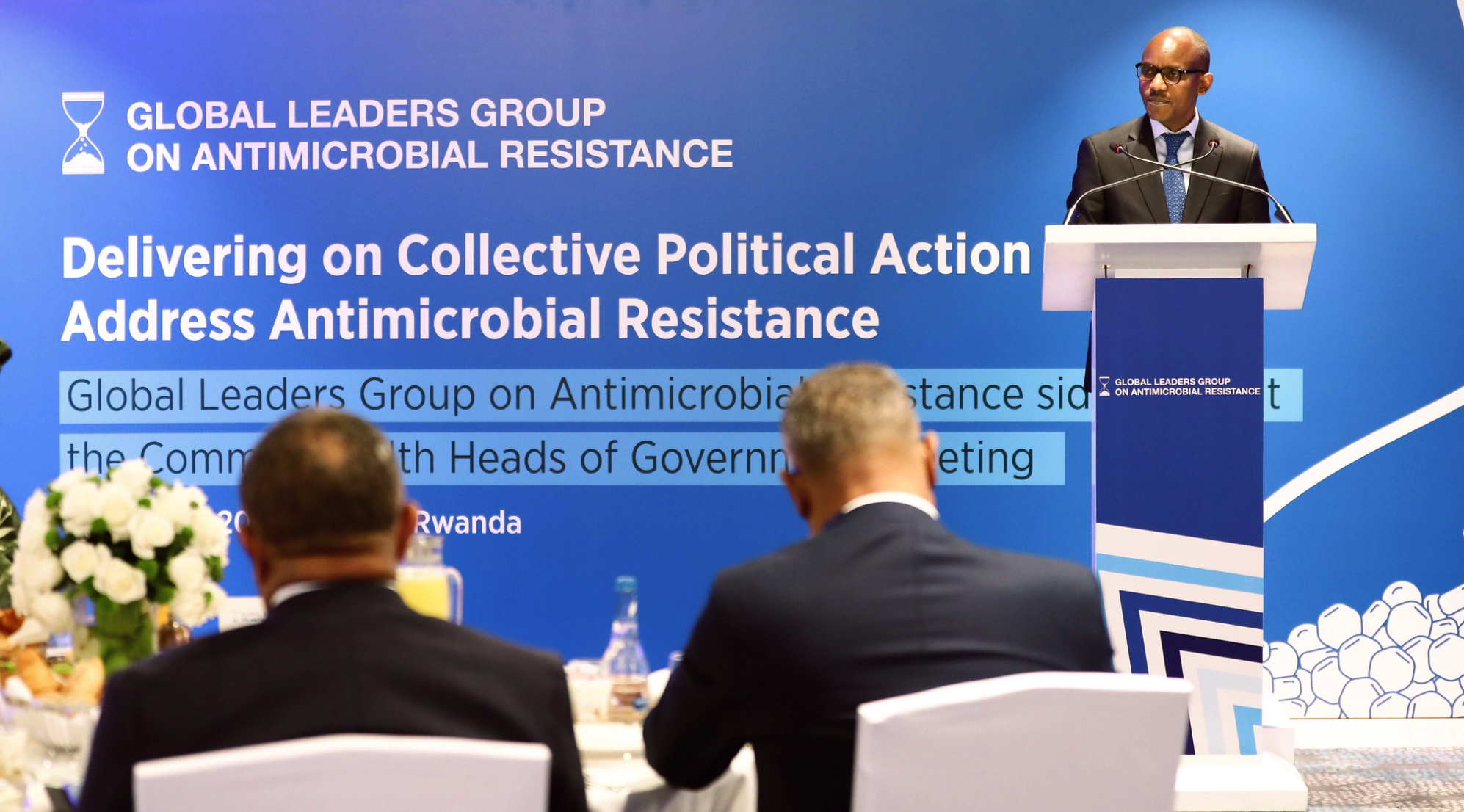
- 30 Apr 2024
Why is it in the News?
The European Society for Clinical Microbiology and Infectious Diseases (ESCMID) and the Global Leaders Group (GLG) on AMR jointly organized a high-level event, ‘Forging partnerships between science and policy’, on April 26, 2024, in Barcelona, Spain.
About Global Leaders Group on Antimicrobial Resistance:
- Established in November 2020, the Global Leaders Group on Antimicrobial Resistance is a collaborative effort of world leaders and experts from various sectors working together to accelerate political action against antimicrobial resistance (AMR).
- The Group serves as an independent global advisory and advocacy entity, striving to maintain public support, political momentum, and visibility of AMR on the global health and development agenda.
- Background: The Group emerged from a recommendation by the Interagency Coordination Group on Antimicrobial Resistance, aiming to strengthen global leadership and political action against AMR.
- The first meeting of the Group was held in January 2021.
Secretariat Support:
- The Quadripartite Joint Secretariat (QJS) on Antimicrobial Resistance, a joint effort by the Food and Agriculture Organization of the United Nations (FAO), the United Nations Environment Programme (UNEP), the World Health Organization (WHO), and the World Organisation for Animal Health (WOAH), provides secretariat support for the Group.
- Through its collaborative and multisectoral approach, the Global Leaders Group on Antimicrobial Resistance is committed to addressing the growing threat of AMR and promoting responsible and sustainable access to antimicrobials.
What is antimicrobial resistance (AMR)?
- Antimicrobial resistance (AMR) refers to the ability of microorganisms, such as bacteria, viruses, fungi, and parasites, to develop resistance to the effects of antimicrobial drugs, such as antibiotics, antivirals, antifungals, and antiparasitics.
- As a result, the medications become less effective or even ineffective at treating infections caused by these resistant microorganisms.
- AMR occurs when microorganisms undergo genetic changes that enable them to survive exposure to antimicrobial drugs.
- These changes can be shared between different microorganisms, leading to the spread of resistance genes.
- Over time, the increased use and misuse of antimicrobial drugs have accelerated the development of AMR.
Common factors contributing to AMR include:
-
- Overprescription of antimicrobials
- Non-adherence to prescribed treatment regimens
- Misuse of antimicrobials in agriculture and livestock farming
- Poor sanitation and hygiene practices
- Lack of access to clean water
- The rise of AMR poses a significant threat to public health, as it makes the treatment of common infections more difficult and increases the risk of complications.
- Additionally, AMR has implications for global health security, as resistant infections can spread rapidly across regions and become a major public health challenge.
Global Alliance of National Human Rights Institutions (GANHRI)
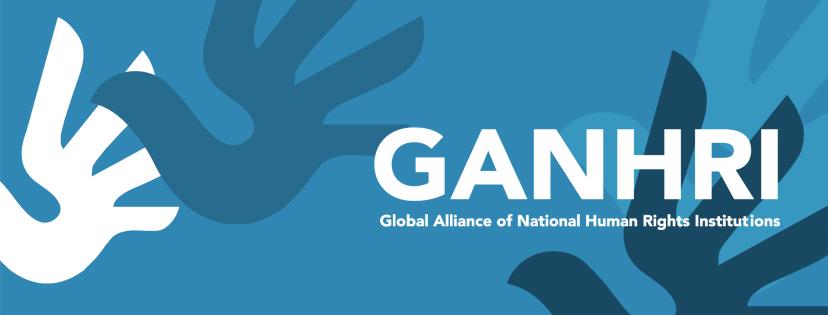
- 29 Apr 2024
Why is it in the News?
The National Human Rights Commission (NHRC) is preparing to defend the government’s human rights processes at a meeting in Geneva this week, where a decision on whether India’s human rights body will retain its “A status” is expected to be made.
About Global Alliance of National Human Rights Institutions (GANHRI):
- The Global Alliance of National Human Rights Institutions (GANHRI) is a representative body of National Human Rights Institutions (NHRIs) from across the world.
- It assists in the establishment and strengthening of independent and effective NHRIs, which meet the international standards set out in the Paris Principles.
- GANHRI encourages joint activities and cooperation among NHRIs, organises international conferences, liaises with the United Nations and other international organisations, assists NHRIs under threat, and assists governments in establishing NHRIs.
- The Asia Pacific Forum of National Human Rights Institutions (APF) and other member institutions continue to make a significant contribution to the operations and human rights initiatives of GANHRI.
- The organisation is incorporated as a non-profit organisation under Swiss law.
- Its Statute, adopted in March 2009, sets out its objectives and how it operates.
Membership:
- NHRIs that comply fully with the Paris Principles – and which have been granted 'A status' by GANHRI – are eligible to become voting members of GANHRI and to hold governance positions.
- NHRIs that only partially comply with the Paris Principles – and which have been granted 'B status' by GANHRI – can participate in meetings of GANHRI but are not eligible to vote or to hold governance positions.
Bureau:
- The operations of GANHRI are managed by its Bureau, which is comprised of representatives from each of the four regional groupings:
- Africa, the Americas, Europe, and the Asia Pacific.
- Each regional grouping is represented by elected representatives from four 'A status' NHRIs.
- The APF is currently represented on the GANHRI Bureau by Australia, India, Korea, and Qatar.
- A key role of the Bureau is to assess applications for membership in the ICC.
- It also reviews and determines the accreditation status of NHRIs, following a recommendation from the Sub-Committee on Accreditation.
- In addition, the Bureau collaborates with the Office of the High Commissioner for Human Rights (OHCHR), in particular the National Institutions and Regional Mechanisms Unit, to facilitate the participation of NHRIs in the United Nations Human Rights Council.
- Bureau meetings are usually held twice a year; the first is in conjunction with the first quarter session of the UN Human Rights Council and the second is in conjunction with one of the NHRI regional network's meetings.
- A meeting is also held in conjunction with the bi-annual International Conference.
International Conference:
- The International Conference involves NHRIs, as well as representatives of United Nations agencies, international organisations, and civil society.
- The purpose of the International Conference is to strengthen cooperation between NHRIs, to discuss human rights issues of shared concern, and to ensure follow-up at the national level.
- The International Conference is held every two years, alternating between Europe, the Americas, Africa, and the Asia Pacific.
Officials:
- The positions of GANHRI Chairperson and Secretary are served on a rotational basis by representatives nominated by the four regional coordinating committees: Europe, Africa, the Americas, and the Asia Pacific.
- The current GANHRI Chairperson is Maryam Abdullah Al Attiyah, Chairperson of the National Human Rights Committee of Qatar (NHRC), representing the Asia Pacific region.
- The current GANHRI Secretary is Amina Bouayach, Chairperson of the National Human Rights Council of Morocco (CNDH), representing the African region.
Secretariat:
- The National Institutions and Regional Mechanisms Unit of OHCHR acts as the GANHRI secretariat.
- GANHRI has a permanent representative in Geneva to support and facilitate the participation of NHRIs in the UN Human Rights Council and its human rights mechanisms.
National Centre for Good Governance (NCGG)
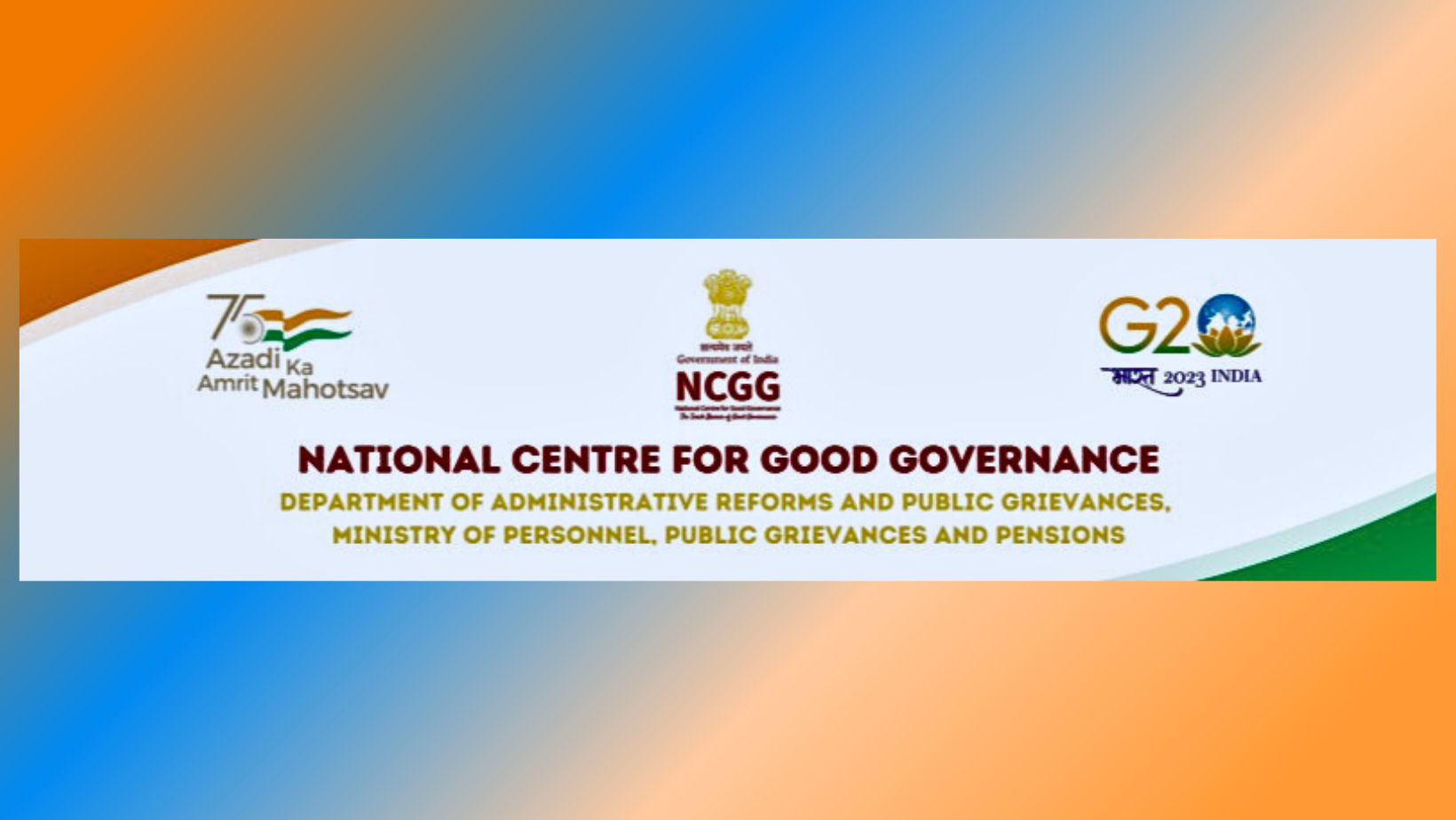
- 29 Apr 2024
Why is it in the News?
A central government delegation is on a three-day visit to Bangladesh beginning Sunday to further boost bilateral ties on governance matters, according to an official statement.
About the National Centre for Good Governance:
- The National Centre for Good Governance (NCGG) was set up in 2014 by the Government of India as an apex–level autonomous institution under the Ministry of Personnel, Public Grievances and Pensions.
- The Centre traces its origin to the National Institute of Administrative Research (NIAR), which was set up in 1995 by the Lal Bahadur Shastri National Academy of Administration (LBSNAA), the Government of India's topmost training institute for civil services.
- NIAR was subsequently rechristened and subsumed into NCGG.
- NCGG deals with a gamut of governance issues from local, state to national levels, across all sectors.
- The Centre is mandated to work in the areas of governance, policy reforms, capacity building, and training of civil servants and technocrats of India and other developing countries.
- It also works as a think tank.
- Since its inception, the Centre has been extensively working in areas such as primary and elementary education, decentralized planning at district and block levels, capacity building of Panchayat Raj Institutions (PRIs), participatory models of learning and action, rural development, cooperatives, and public sector management, etc.
- In addition, it focuses on issues related to good governance, social accountability, water, sanitation, and hygiene (WASH), among other sectors.
- The Centre encapsulates the essence of good governance and weighs on the importance of the rule of law, bringing in transparency, working to promote public participation in governance, service delivery, and reforms, as well as in developing accountable institutions, access to information, etc.
Carnation Revolution
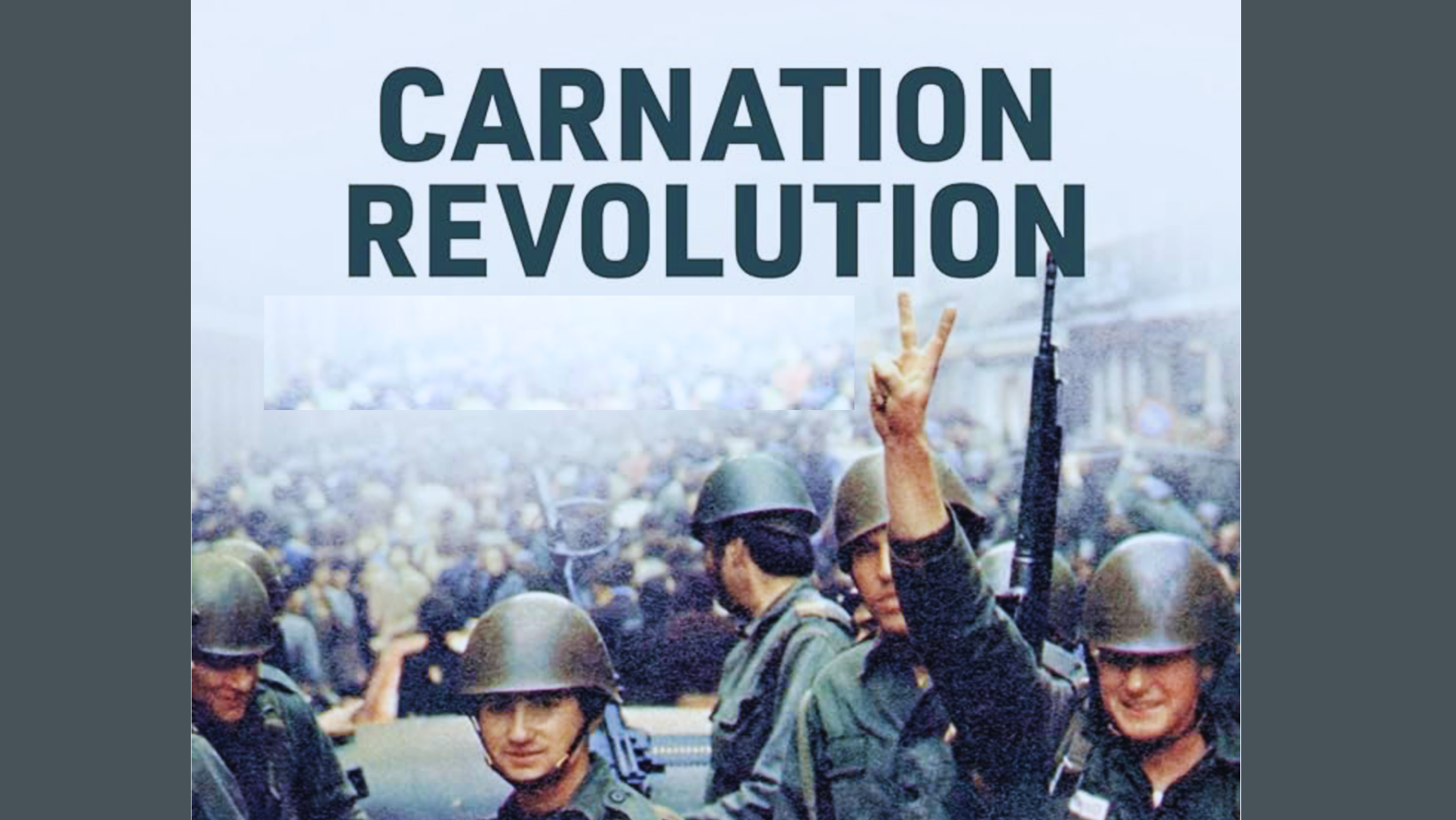
- 27 Apr 2024
Why is it in the News?
Recently, Portugal commemorated its 50th anniversary of Portugal's Carnation Revolution – the peaceful uprising that toppled a dictatorship and ended a decade of colonial war.
About the Carnation Revolution:
- The Carnation Revolution, also known as the 25th of April, was a pivotal event in Portugal's history that marked the transition from an authoritarian regime to a democratic government.
- On April 25, 1974, a group of military officers orchestrated a nearly bloodless military coup, overthrowing the Estado Novo dictatorship that had ruled Portugal for over four decades.
- The revolution aimed to accelerate decolonization, end ongoing wars through negotiations, and improve socio-economic conditions within Portugal.
- This event not only transformed Portugal's political landscape but also had significant implications for the nation's African colonies.
- Several factors contributed to the success of the Carnation Revolution, including widespread discontent with the authoritarian regime, a costly and unpopular colonial war, and the growing desire for democracy and improved living conditions.
- The coup leaders, known as the Armed Forces Movement (MFA), garnered support from various factions, including the Communist Party, socialists, and moderate democrats.
- The Carnation Revolution was named after a Lisbon flower seller who offered red carnations to soldiers, which were then placed in the barrels of their rifles.
- This iconic gesture symbolized the peaceful nature of the coup and solidified the carnation as a symbol of Portugal's democratic movement.
- The 50th anniversary of the Carnation Revolution celebrated on April 25, 2024, signifies the enduring impact of this historic event on Portugal's political trajectory and its relationship with its former colonies.
Indian Historical Records Commission (IHRC)
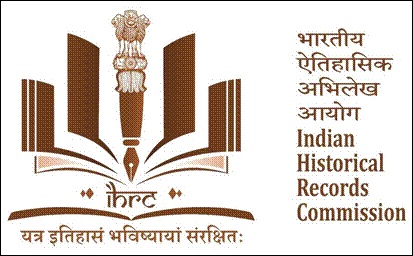
- 26 Apr 2024
Why is it in the News?
Recently, the Indian Historical Records Commission (IHRC) has adopted a new logo and motto.
About Indian Historical Records Committee (IHRC):
- The Indian Historical Records Committee (IHRC) is a national forum established in 1919, comprising creators, custodians, and users of records.
- Its primary purpose is to advise the Government of India on matters related to record management and their utilization for historical research.
Secretariat:
- The National Archives of India, New Delhi, serves as the Secretariat for the IHRC, formerly known as the Indian Historical Records Committee since 1911.
Leadership and Membership:
- Led by the Union Minister of Culture, the IHRC consists of 134 members, including government agencies, government-appointed nominees, representatives from State/UT Archives, universities, and learning institutions.
- Over the years, the IHRC has convened 62 sessions.
Committee Structure: The IHRC operates with two adjunct bodies:
- Editorial Committee: Responsible for reviewing and approving papers based on archival sources for presentation at committee sessions.
- Standing Committee: Tasked with reviewing the implementation of committee recommendations and providing input on meeting agendas.
- The Secretary of the Ministry of Culture chairs the Standing Committee of IHRC.
- The Indian Historical Records Commission (IHRC) has adopted a new logo and motto recently.
- The logo signifies the theme and uniqueness of IHRC entirely.
- The pages in the shape of lotus petals represent IHRC as the resilient nodal institution for maintaining historical records.
- The Sarnath pillar in the middle represents India's glorious past.
- Brown as the colour theme reinforces the organization's mission of preserving, studying, and honouring India's historical records.
- The motto translates as "Where history is preserved for the future."
- The IHRC plays a vital role in identifying, collecting, cataloging, and maintaining historical documents, manuscripts other sources of historical information.
- By doing so the Commission ensures that valuable historical knowledge is conserved for future generations.
- The motto, therefore, reflects the Commission's commitment to ensuring the safeguarding of historical documents and making these accessible for the benefit of present and future generations.
Global Tiger Conservation Coalition
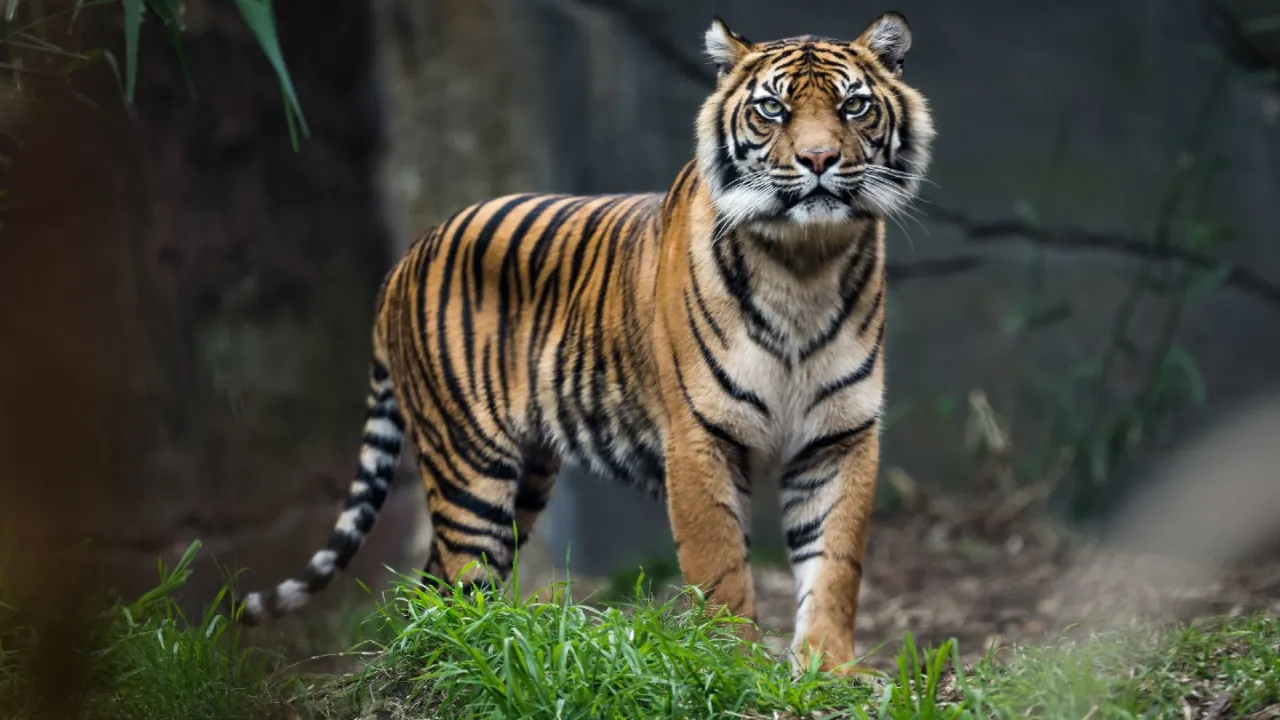
- 25 Apr 2024
Why is it in the News?
At the Sustainable Finance for Tiger Landscapes Conference, Bhutan and the Tiger Conservation Coalition pledged to mobilize $1 billion for tiger conservation efforts.
About the Tiger Conservation Coalition:
- The Tiger Conservation Coalition is a group of non-governmental organizations (NGOs) that have worked for many years with partners to conserve tigers.
- It brings together leading tiger biologists and experts in wildlife crime, human-wildlife coexistence, policy, finance, development, and communications with unprecedented alignment on achieving tiger conservation at scale.
- Its member organizations include the Environmental Investigation Agency (EIA), Fauna & Flora, the International Union for Conservation of Nature and Natural Resources (IUCN), Panthera, TRAFFIC, United Nations Development Programme (UNDP), Wildlife Conservation Society (WCS) and World Wide Fund for Nature (WWF).
- It is an independent group of organizations that combines and shares the vast knowledge, on-the-ground experience, and data of its members and partners to support Tiger Range Countries in developing and implementing effective approaches to tiger conservation.
- The Coalition was founded on strong relationships among eminent tiger experts already working together on major tiger assessments, including the latest assessment by the IUCN Red List of Threatened Species released in 2022, and the forthcoming Green Status Assessment, and coalesced around a common vision for tiger recovery.
- By engaging national and local civil society organizations from the region, and continuing to support the Global Tiger Initiative Council and the Global Tiger Forum, the coalition aims to further strengthen partnerships and impactful outcomes for tigers.
- In January 2022, the Tiger Conservation Coalition released its vision for tiger recovery through 2034, the next Year of the Tiger.
- “Securing a Viable Future for the Tiger” presents a set of measurable goals and high-level strategic approaches to achieve the long-term presence of viable and ecologically functional populations of wild tigers.
- Its suggested actions, grounded in the latest science and results, would lead to increasing numbers of tigers secure in current and expanded protected habitats, with distribution and connectivity across their indigenous range.
- Tiger Conservation Coalition members co-developed Tiger Conservation Landscapes 3.0, an integrated habitat modeling system to measure and monitor changes in tiger habitat at range-wide, national, biome, and landscape scales in near real-time.
- This work serves as a model for objective, range-wide, habitat monitoring as countries work to achieve the goals laid out in the 30x30 agenda, the Sustainable Development Goals, and the Kunming-Montreal Global Biodiversity Framework.
Global Report on Food Crises (GRFC) 2024
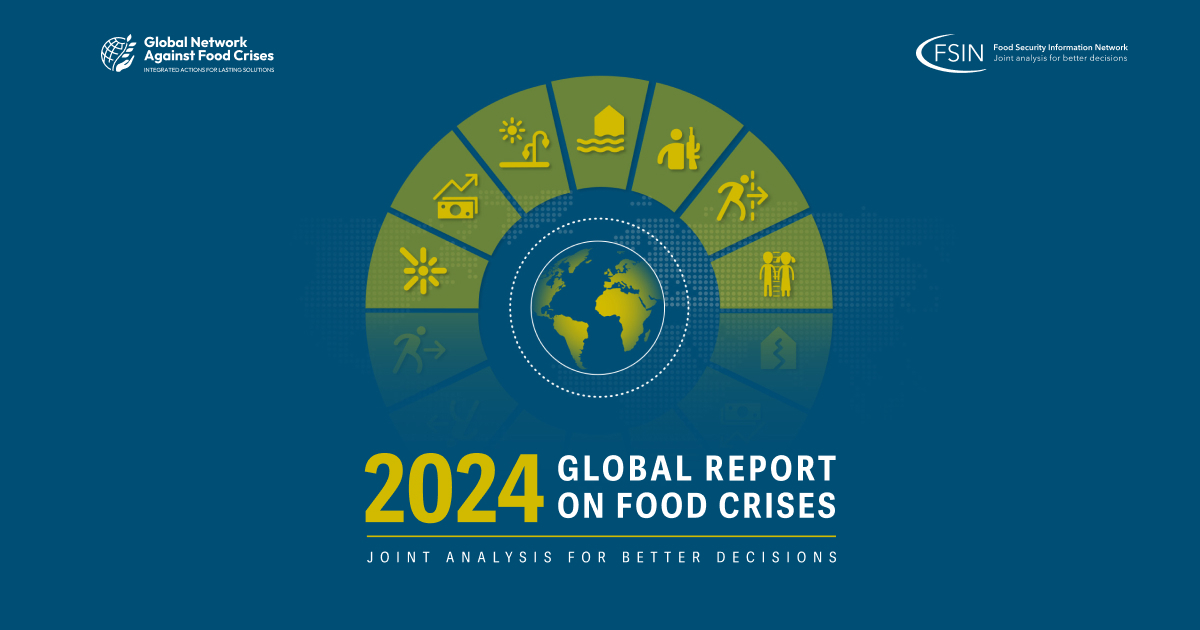
- 25 Apr 2024
Why is it in the News?
Nearly 282 million people faced high levels of acute food insecurity in 59 countries in 2023, with extreme weather being the second most significant factor driving food crisis, revealed the 2024 Global Report on Food Crisis (GRFC) released April 24, 2024.
About Global Report on Food Crises (GRFC) 2024:
- The Global Report on Food Crises (GRFC) 2024, released annually by the Food Security Information Network (FSIN), provides a comprehensive analysis of global food crises and their causes.
- Launched by the Global Network Against Food Crises, a multistakeholder initiative involving United Nations agencies, the European Union, the United States Agency for International Development, and various non-governmental agencies, the report highlights the alarming state of food insecurity worldwide.
Key findings from the GRFC 2024 include:
- Analysis of 1.3 billion people in 59 countries in 2023, with nearly 282 million facing high levels of acute food insecurity.
- Identification of 2023 as the fifth consecutive year of rising numbers of people suffering acute food insecurity, defined as life or livelihood-threatening food deprivation.
- Conflicts, extreme weather events, and economic shocks have been identified as the primary drivers behind worsening food crises globally.
- Conflict hotspots like Palestine's Gaza Strip and Sudan experienced a significant escalation in food crises during 2023, with conflict and insecurity becoming the main drivers in 20 countries, directly affecting 135 million people.
- The Gaza Strip emerged as the area with the most severe food crisis over the past eight years of GRFC reporting, while Sudan is facing one of the worst food crises globally, with nearly one-third of its population in need of emergency food assistance.
- Weather extremes were the main driver in 18 countries, causing over 72 million people to face high levels of acute food insecurity.
- The 10 countries experiencing the largest food crises in 2023 included the Democratic Republic of Congo, Nigeria, Sudan, Afghanistan, Ethiopia, Yemen, Syria, Bangladesh, Pakistan, and Myanmar.
- On a positive note, the food crisis improved in 17 countries, including the Democratic Republic of Congo and Ukraine.
- The GRFC 2024 report emphasizes the urgent need for coordinated global efforts to address the root causes of food crises and enhance the resilience of vulnerable populations.
- By understanding and responding to these challenges, we can work towards a more food-secure future for all.
International Conference on Disaster Resilient Infrastructure (ICDRI)
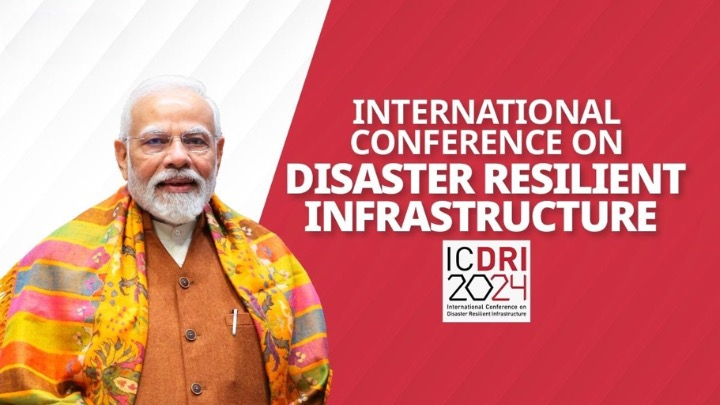
- 25 Apr 2024
Why is it in the News?
Countries must build “resilient infrastructure” against natural disasters that are becoming more frequent and severe, said Prime Minister Narendra Modi recently.
About the Coalition for Disaster-Resilient Infrastructure (CDRI):
- The Coalition for Disaster-Resilient Infrastructure (CDRI) is a global partnership comprising national governments, UN agencies and programs, multilateral development banks, private sector entities, and academic institutions.
- Established during the United Nations Climate Action Summit in 2019 in New York, CDRI is dedicated to addressing the challenges associated with building resilience in infrastructure systems and development processes.
Objectives:
- CDRI aims to enhance the resilience of infrastructure systems to climate and disaster risks, thereby promoting sustainable development.
- It seeks to expedite the development and retrofitting of resilient infrastructure to meet the imperatives of the Sustainable Development Goals, including universal access to basic services and fostering prosperity and decent work.
- Serving as an inclusive multi-stakeholder platform, CDRI is led and managed by national governments. It facilitates the exchange of knowledge on various aspects of infrastructure resilience.
- CDRI brings together diverse stakeholders to create mechanisms assisting countries in upgrading their capacities, systems, standards, regulations, and practices related to infrastructure development, tailored to their risk contexts and economic needs.
Membership:
- Since its inception, 39 countries, 7 international organizations, and 2 private sector organizations joined as members.
- International organizations include:
- The Asian Development Bank (ADB)
- World Bank Group
- United Nations Development Programme (UNDP)
- United Nations Office for Disaster Risk Reduction (UNDRR)
- European Union
- European Investment Bank, and
- The Private Sector Alliance for Disaster-Resilient Societies (ARISE)
- The CDRI is the second major coalition launched by India outside of the UN, the first being the International Solar Alliance.
Secretariat:
- CDRI's secretariat is based in New Delhi, India.
State of the Climate in Asia 2023 Report
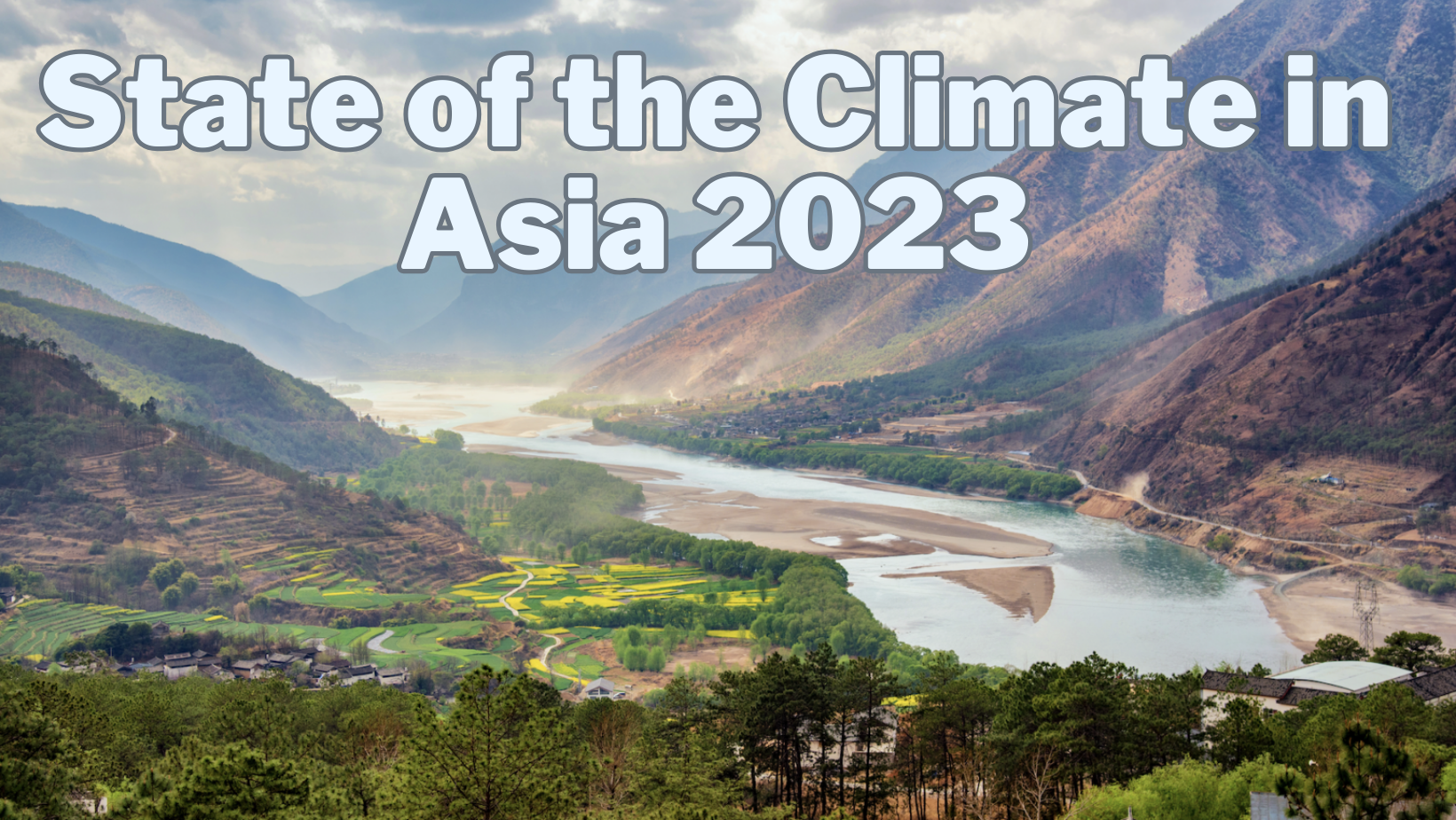
- 24 Apr 2024
Why is it in the News?
As Asia is warming faster than the global average, it is witnessing more extreme weather, climate, and water-related events than any other region across the world.
Highlights of the State of the Climate in Asia 2023 Report:
- The 2023 State of the Climate in Asia Report, spearheaded by the World Meteorological Organization, sheds light on significant climate trends and events across the continent:
- In 2023, Asia witnessed 79 extreme climate events, affecting over nine million individuals, making it the most disaster-affected region.
- Atmospheric concentrations of carbon dioxide, methane, and nitrous oxide soared to unprecedented levels in 2022.
- Oceans have absorbed approximately a quarter of the carbon dioxide emitted annually into the atmosphere since 1960, resulting in record-high ocean heat content in 2023.
- Tropical cyclone activity over the North Indian Ocean surpassed the average.
- 2023 marked Asia's second-highest mean temperature on record, with Japan and Kazakhstan experiencing record warmth.
- Glacial retreat accelerated in 2023, particularly in the East Himalayas and Central Asia's Tian Shan mountains, due to elevated temperatures and arid conditions.
About the World Meteorological Organisation:
- The World Meteorological Organization (WMO) is a specialized agency of the United Nations with a membership of 193 member states and territories.
- It is the UN system's authoritative voice on the state and behavior of the Earth's atmosphere, its interaction with the oceans, the climate it produces, and the resulting distribution of water resources.
- WMO originated from the International Meteorological Organization, the roots of which were planted at the 1873 Vienna International Meteorological Congress.
- Established by the ratification of the WMO Convention on 23 March 1950, WMO became the specialized agency of the United Nations for meteorology (weather and climate), operational hydrology, and related geophysical sciences a year later.
- The Secretariat, headquartered in Geneva, is headed by the Secretary-General.
- Its supreme body is the World Meteorological Congress.
Netzah Yehuda Battalion

- 23 Apr 2024
Why is it in the News?
The US government may soon sanction a battalion of the Israeli Defence Forces (IDF) over alleged human rights violations, marking the first such move in the history of the two countries’ relations.
What is the Netzah Yehuda Battalion?
- The Netzah Yehuda battalion was set up in 1999 to accommodate the religious beliefs of ultra-Orthodox Jews and other religious nationalist recruits in the army.
- It was established to facilitate military service for these communities, accommodating their religious observances by scheduling prayer and study times, and restricting their interactions with female soldiers.
- The battalion is historically stationed in the occupied West Bank region and faces intense scrutiny for allegedly committing human rights violations against Palestinians.
- Netzah Yehuda came on the radar of United States agencies after the death of an elderly Palestinian-American man, who was detained by the battalion.
What is the Unit Accused Of?
- The United States called for a criminal investigation after Netzah Yehuda soldiers were accused of being involved in the death of a 78-year-old Palestinian-American, Omar Assad, who died of a heart attack in 2022 after he was detained and was later found abandoned at a building site.
- A Palestinian autopsy found Assad died from a stress-induced heart attack brought on by being manhandled.
- The case attracted unusual attention because of his dual nationality, his age, and a demand by the U.S. State Department for an investigation into his death.
- There have been several other incidents in recent years, some captured on video, in which Netzah Yehuda soldiers were accused of, or charged with, abusing Palestinian detainees.
- The battalion primarily operated in the West Bank before it was moved out of the territory in late 2022 after U.S. criticism.
- The unit has recently been serving in Gaza.
Star Campaigners
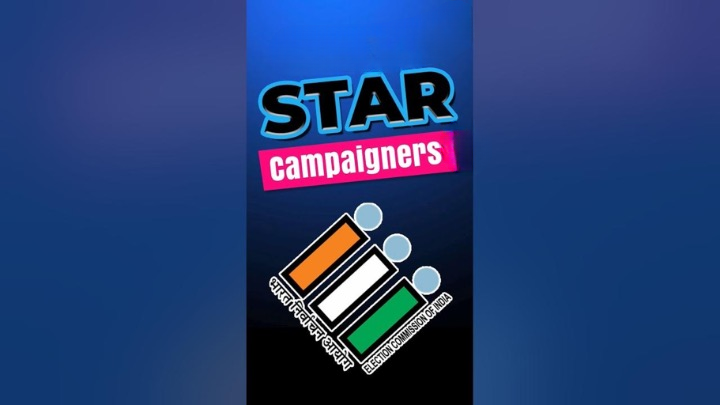
- 23 Apr 2024
Why is it in the News?
In the current general elections, political parties are selecting 'star campaigners' to lead their campaigns.
What are Star Campaigners in Election?
- Star campaigners are popular individuals with significant fan followings and are chosen by political parties to contest or campaign during elections.
Legal Provisions:
- The Representation of the People Act, 1951 (RPA) governs the expenditure incurred by 'leaders of a political party,' commonly referred to as star campaigners.
- A recognized political party (National or State) can appoint a maximum of 40-star campaigners.
- A registered unrecognized political party can appoint up to 20.
- The names of star campaigners must be communicated to the Election Commission (EC) and Chief Electoral Officer (CEO) within seven days from the date of election notification.
- For multi-phase elections, political parties can submit separate lists of star campaigners for different phases.
Expenses and Apportionment:
- If a star campaigner seeks votes for contesting candidates or shares the dais with them, rally/meeting expenses are apportioned to the election expenditure of those candidates.
- Boarding/lodging expenses incurred by the star campaigner while campaigning for candidates are included in the expenditure accounts of those candidates.
- If candidates travel with the star campaigner, 50% of the star campaigner's travel expenditure is apportioned to those candidates.
Special Cases:
- When a Prime Minister or former Prime Minister serves as a star campaigner, the government bears the expenditure on security, including bullet-proof vehicles.
- However, if the Prime Minister is accompanied by another star campaigner, the candidate must bear 50% of the expenditure on security arrangements.
National Organ and Tissue Transplant Organization (NOTTO)
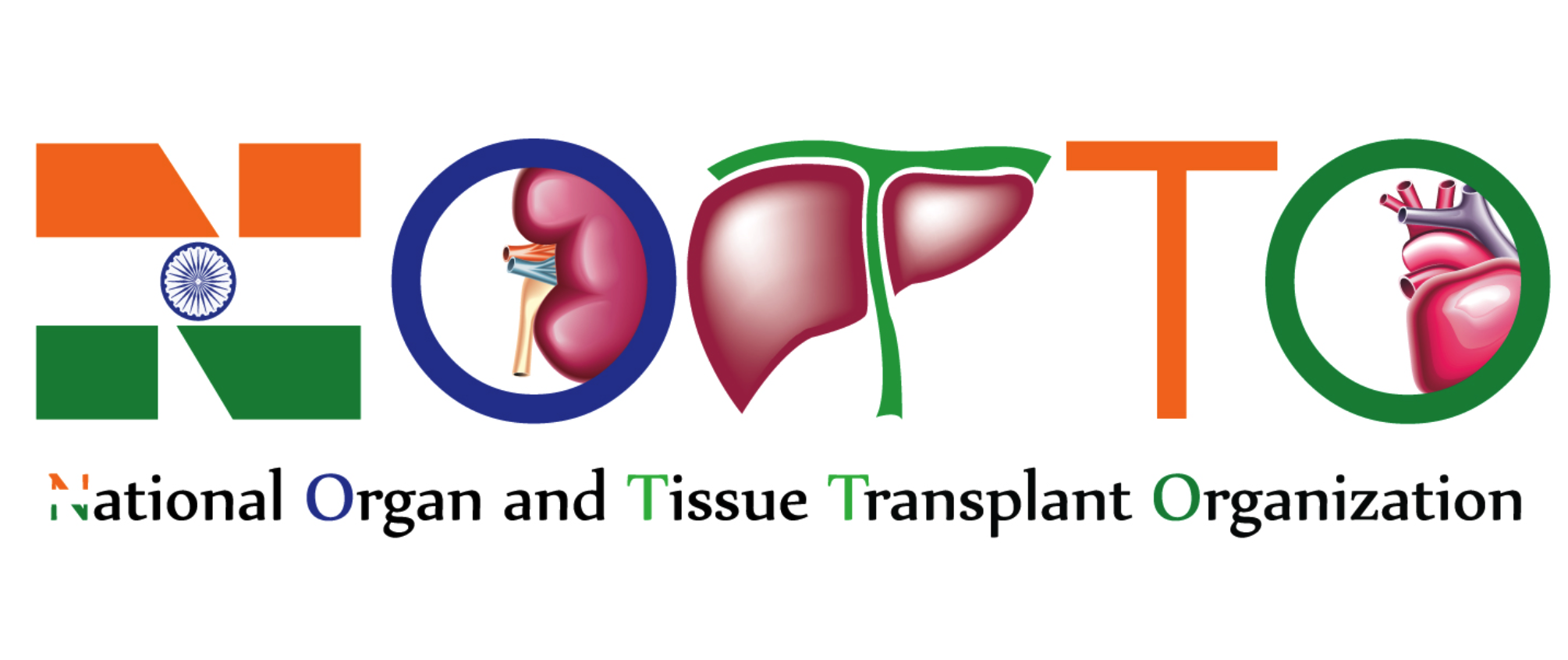
- 22 Apr 2024
Why is it in the News?
Each organ transplant case will receive a distinctive National Organ and Tissue Transplant Organisation (NOTTO) ID assigned to both the donor and the recipient.
Highlights of the News:
- The Union Health Ministry has mandated the cessation of commercial organ transactions, particularly those involving foreign nationals, and emphasized the need for stringent oversight by local authorities.
- For deceased donor transplants, a NOTTO-ID is required for organ allocation, while in living donor transplants, the ID must be generated within 48 hours post-surgery through the NOTTO website by the hospital.
What is the National Organ and Tissue Transplant Organization (NOTTO)?
- NOTTO is a national organization established under the Directorate General of Health Services, Ministry of Health and Family Welfare, Government of India.
It serves as the central coordinating hub for:
- Organ and tissue procurement and distribution.
- Maintaining a registry of organ and tissue donation and transplantation activities across the country.
NOTTO comprises two divisions:
- National Human Organ and Tissue Removal and Storage Network:
- Acts as the primary center for nationwide coordination of organ and tissue procurement, distribution, and registry.
- Established in accordance with the Transplantation of Human Organs (Amendment) Act 2011.
- National Biomaterial Centre (National Tissue Bank):
- This center focuses on filling the gap between demand and supply while ensuring quality assurance in tissue availability.
- The Transplantation of Human Organs (Amendment) Act 2011 has expanded NOTTO's scope to include tissue donation and registration of tissue banks.
Activities performed by NOTTO include:
-
- Coordinating tissue procurement and distribution
- Donor tissue screening
- Tissue removal and storage
- Tissue preservation
- Laboratory screening of tissues
- Tissue tracking
- Sterilization
- Record maintenance
- Data protection and confidentiality
- Quality management in tissues
- Patient information on tissues
- Developing guidelines, protocols, and standard operating procedures
- Training and assistance in registering other tissue banks
BFI Biome Virtual Network Program
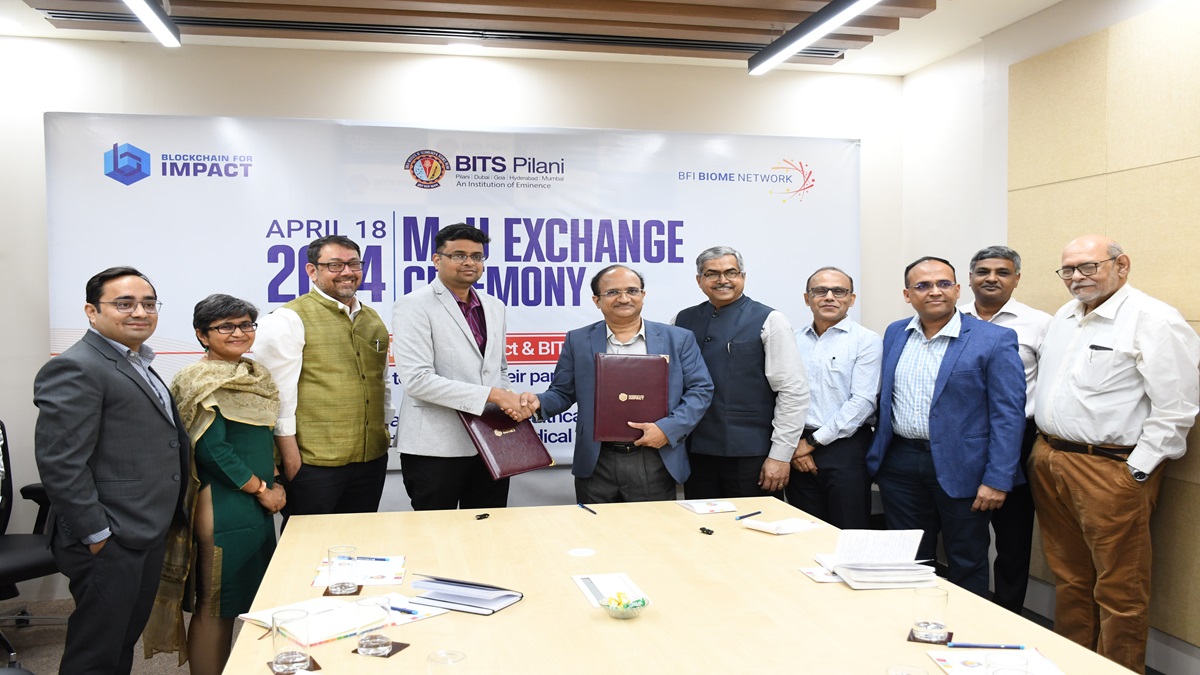
- 22 Apr 2024
Why is it in the News?
Centre for Cellular and Molecular Platforms (C-CAMP) has joined the Blockchain for Impact (BFI) Biome Virtual Network Program to accelerate transformative healthcare solutions through biomedical innovation.
About BFI Biome Virtual Network Program:
- The BFI-Biome Virtual Network Program is a pioneering initiative uniting incubators and research institutes under a single umbrella.
- This fosters collaborations among the stakeholders in the translational pipeline, the process of transforming research discoveries into real-world applications.
- Through this program, BFI will allocate over 200,000 USD over the course of three years, leveraging C-CAMP’s expertise to develop essential programs for healthcare-based startups.
- C-CAMP being an organization to foster deep science research and innovation for societal impact, the goals and mandates of both partners naturally align and complement each other.
- The partnership is expected to blur disciplinary boundaries in approaching biotech R&D, promote cross-integration of expertise and infrastructure, and provide multidisciplinary insights into need identification, problem-solving, and solution implementation.
What is C-CAMP?
- Centre for Cellular And Molecular Platforms (C-CAMP) is an initiative of the Dept of Biotechnology, Ministry of Science and Technology, Govt. of India, with a mandate to be an enabler of cutting edge Life Science Research and Innovation.
- C-CAMP is also a member of the Bangalore Life Sciences Cluster (BLiSC).
- It facilitates Bioscience Research and Entrepreneurship by providing Research, Development, Training, and Services in state-of-the-art Technology Platforms.
- As a part of C-CAMP's mandate of promoting entrepreneurship and innovation, C-CAMP has created and fostered an entrepreneur-friendly culture in and around the Academic/Research environment through its involvement in Seed Funding Schemes for Startups, Entrepreneur Mentorship program, and Bio-Incubation facility.
- It has established State-Of-The-Art Platform Technologies which are essential requirements for success and leadership in the field of Life Sciences.
- C-CAMP allows Investigators to use Techniques as tools and not be limited by Technological barriers while pursuing challenging scientific questions.
World Earth Day 2024
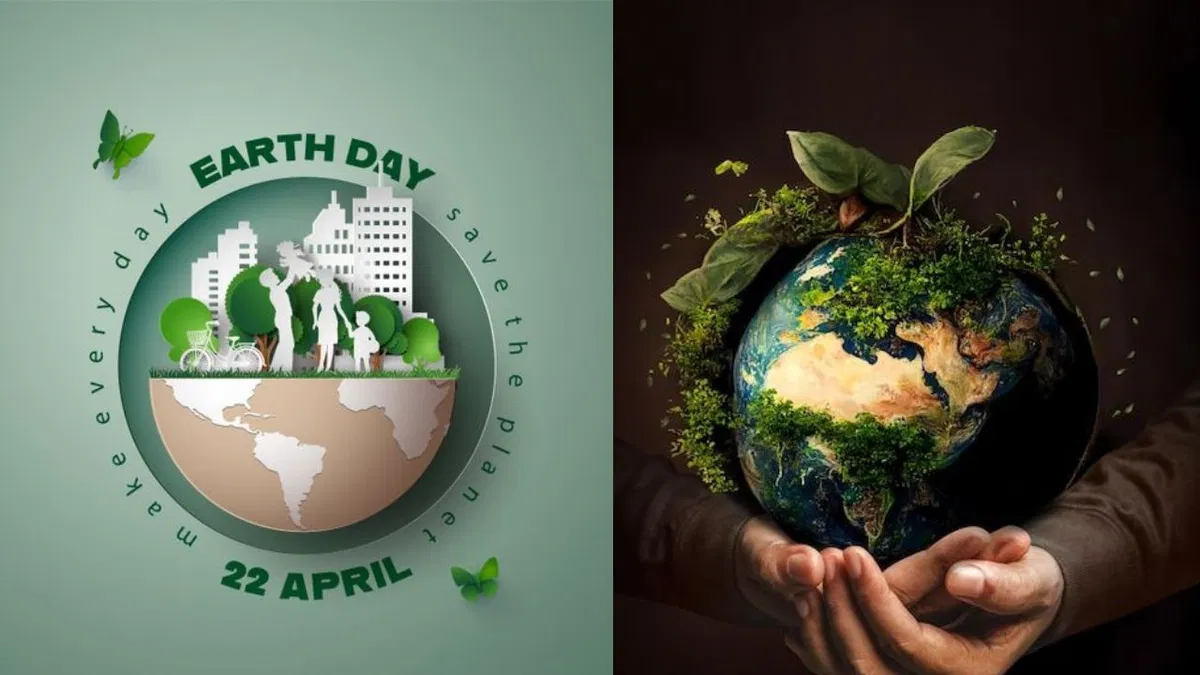
- 22 Apr 2024
Why is it in the News?
On World Earth Day 2024, a global network promoting local food and traditional cooking has called for practical measures to cut down on plastic use in the food chain and to safeguard the environment.
About World Earth Day:
- World Earth Day, also known as International Mother Earth Day, is a globally recognized event dedicated to raising awareness and promoting the sustainability of our planet.
- Earth Day is celebrated on April 22 in the United States and on either April 22 or the day the spring equinox occurs throughout the rest of the world.
- Theme: The theme for World Earth Day 2024 is “Planet vs Plastics”.
- The theme aims to bring attention to the serious issue of plastic pollution and how it harms nature.
Earth Day History:
- The origin of Earth Day can be traced back to 1970.
- The idea behind the event originated from Gaylord Nelson, a US senator, and Denis Hayes, a Harvard student.
- They were both deeply disturbed by the deteriorating environment in the United States and the massive January 1969 oil spill in Santa Barbara, California.
- Deeply disturbed by the environmental impacts, Gaylord Nelson wanted to infuse the energy of student protests into an emerging public consciousness about air and water pollution.
- He recruited Denis Hayes, a young activist, to manage the campus teach-ins and to scale the idea of environment conservation to a broader public.
- They choose April 22, a weekday between Spring Break and Final Exams, to increase student participation.
- Its immediate success was evident with a massive turnout of 20 million people across the US.
- By 1990, Earth Day became a global event transcending national borders.
Earth Day Significance:
- Earth Day symbolizes the need to protect our mother nature.
- The day encourages every individual to think about environmental conservation and act accordingly.
- It speaks about the need to reduce carbon footprints, conserve natural resources, and protect wildlife and natural habitats.
- The day also serves as a platform to advocate for policy changes that can have a positive impact on the environment.
Ethylene Oxide
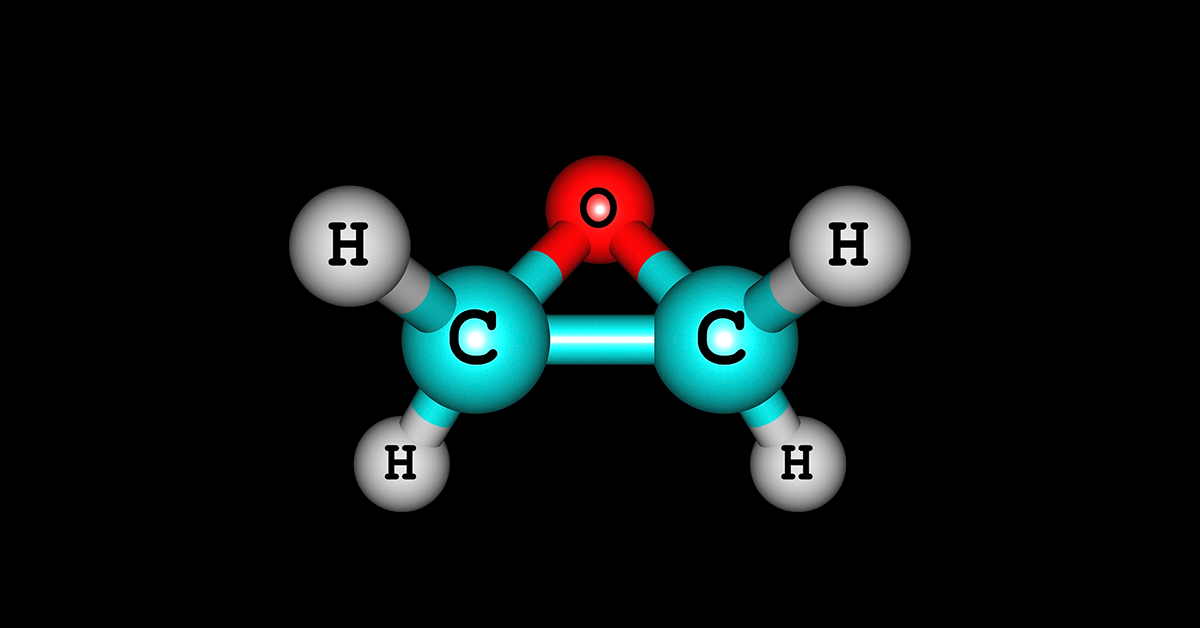
- 20 Apr 2024
Why is it in the News?
The Singapore Food Agency (SFA) has issued a recall on Indian spice brand Everest’s fish curry masala after detecting an ‘excessive’ amount of ethylene oxide–a pesticide–in it.
What is Ethylene Oxide?
- Ethylene oxide is a colorless and flammable gas with a slightly sweet odor and It dissolves easily in water.
- It is widely used in various industries due to its versatile properties.
- Its primary applications include the production of other chemicals, such as ethylene glycol for antifreeze and polyester, as well as the sterilization of medical equipment.
- It also has minor applications in agriculture.
- In this sector, it's used as a fumigant to control insect pests in stored agricultural goods, such as food commodities, to protect them from infestation.
- This usage makes up less than 1% of its applications, and it is combined with other gases to minimize potential toxicity to humans and the environment.
- While ethylene oxide plays a significant role in many industrial processes, it also poses health risks to those exposed to it.
- Potential health effects range from mild symptoms like headaches, nausea, and respiratory issues, to more severe problems such as cancer and reproductive harm.
- To minimize exposure risks, industries and facilities that use ethylene oxide are subject to environmental regulations and required to implement safety measures.
- These measures include emission-reducing and monitoring devices, on-site testing, site-specific operating parameters, and regular reporting and record-keeping.
- Despite these precautions, workers in factories that produce or use ethylene oxide, as well as people living near these facilities, may still face potential health risks.
How Do Pesticides Harm Our Bodies if Present in Food?
- Pesticides, designed to ward off unwanted organisms in agriculture, can pose extensive risks to human health if they find their way into our food chain.
- Even a brief exposure to some of them can cause acute poisoning and symptoms, including diarrhea, dehydration, and skin irritation.
- Some insecticides like Resmethrin, Cypermethrin, and Fenvalerate have been connected to chronic health issues, which include reproductive complications, immune system disruption, pores, and skin infection, and interference with the endocrine system.
- Even low-level exposure over the years can cause critical health implications.
How Long-term Issues Can be Combated?
- Some steps can be taken to mitigate the risks associated with pesticides and ethylene oxide exposure.
- It’s critical to prevent the runoff of insecticides into storm drains, which can contaminate water sources.
- While using insecticides, it’s essential to consider the characteristics of the application site to minimize unintended exposure.
- Attention to the geological factors and groundwater depth can prevent pesticide seepage into water reservoirs.
- By implementing these measures and maintaining strict regulations, we can minimize the health risks posed by these chemical substances.
World Craft Council International
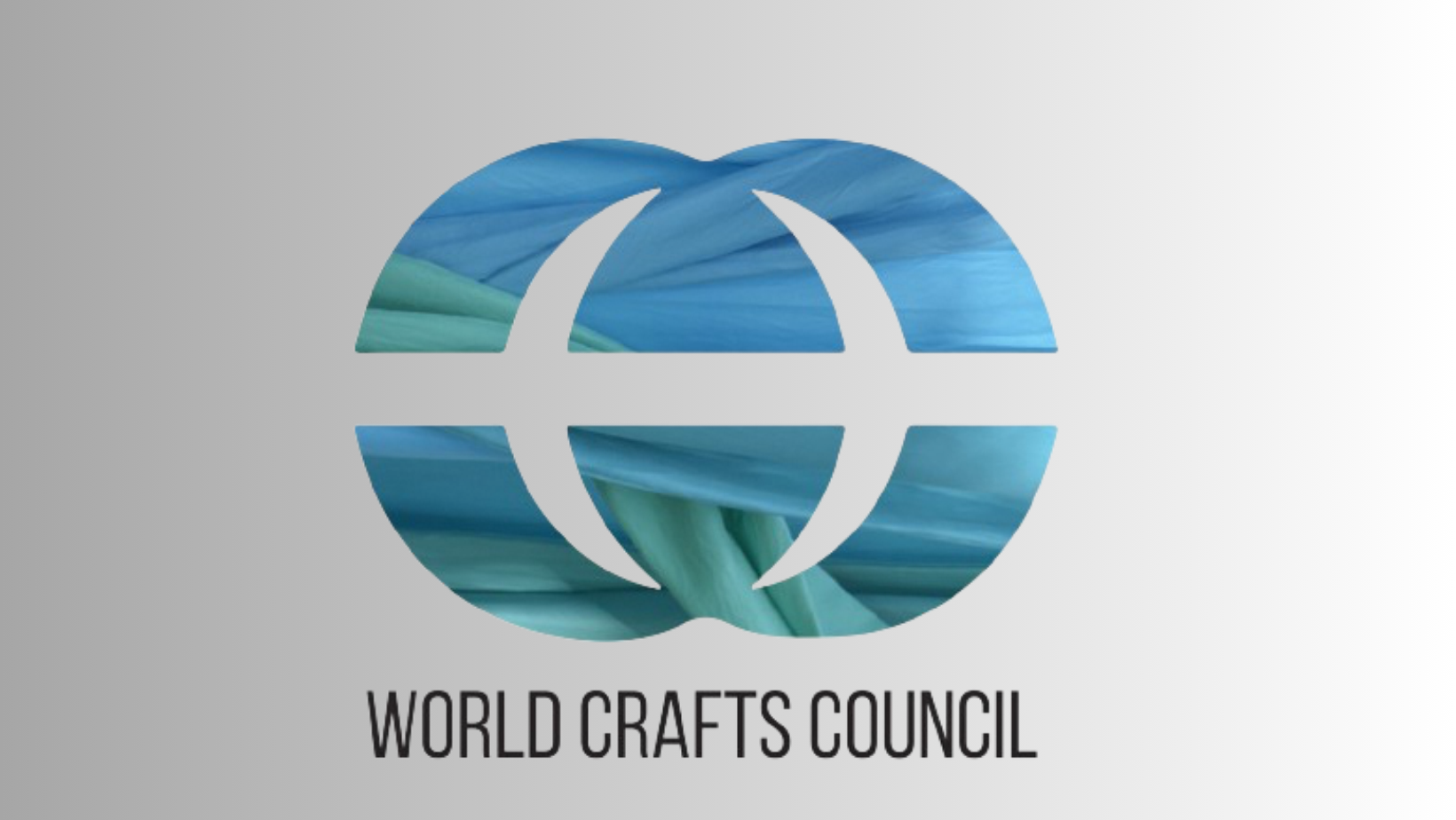
- 20 Apr 2024
Why is it in the News?
The World Crafts Council International (WCCI), a Kuwait-based organization working on the recognition and preservation of traditional crafts across the globe, has picked Srinagar for mapping its craft clusters before its final nomination as the World Craft City (WCC) from India this year.
About World Crafts Council:
- World Crafts Council AISBL is an international non-profit organization dedicated to fostering the preservation, promotion, and advancement of global craftsmanship and traditional crafts.
- It was founded by Ms. Aileen Osborn Vanderbilt Webb, Ms. Margaret M. Patch, and Smt Kamaladevi Chattopadhyay at the 1st World Crafts Council General Assembly in New York on June 12, 1964.
- Since its inception, the World Crafts Council AISBL has been affiliated with UNESCO under Consultative Status for many years.
- Its mission is to empower artisans, celebrate cultural diversity, and contribute to sustainable development by supporting the rich tapestry of global craftsmanship and preserving languishing crafts from extinction.
- Headquarters: The current headquarters for the term (2021-2024) is located in Kuwait.
Objectives:
- The main objective of the World Crafts Council AISBL is to strengthen the status of crafts in cultural and economic life.
- The Council aims to promote fellowship among craftspersons by offering them encouragement, help, and advice.
- It fosters and assists cultural exchange through conferences, international visits, research studies, lectures, workshops, exhibitions, and other activities.
- The WCC also seeks to foster wider knowledge and recognition of the craftspeople's work with due regard to the diversified cultural and national backgrounds and traditions of its members.
- In carrying out these principles, the Council shall consult with governments, national and international institutions, societies, and individuals.?
India has only 3 cities designated as World Craft City:
- Mysuru (Kinnal paintings, Sandalwood carvings, Rosewood Inlay, etc.)
- Mamallapuram (Stone Carving continuing since the Pallava dynasty (275 CE to 897 CE)
- Jaipur (Kundan Jadai (Gem setting), Meenakari Jewellery, Lac-based craft, Gotta Patti Work, etc.)
About the World Craft City Programme:
- The World Craft City Programme, initiated in 2014 by the World Crafts Council AISBL (WCC-International), recognizes the significance of local authorities, artisans, and communities in global cultural, economic, and social advancement.
- By establishing a vibrant network of craft cities worldwide, it embraces the ideals of the creative economy and acknowledges the valuable contributions of local entities to comprehensive development.
- Notably, Jaipur (Rajasthan), Mamallapuram (Tamil Nadu), and Mysore have already been designated as craft cities under this initiative in India.
National Curriculum for Early Childhood Care and Education 2024
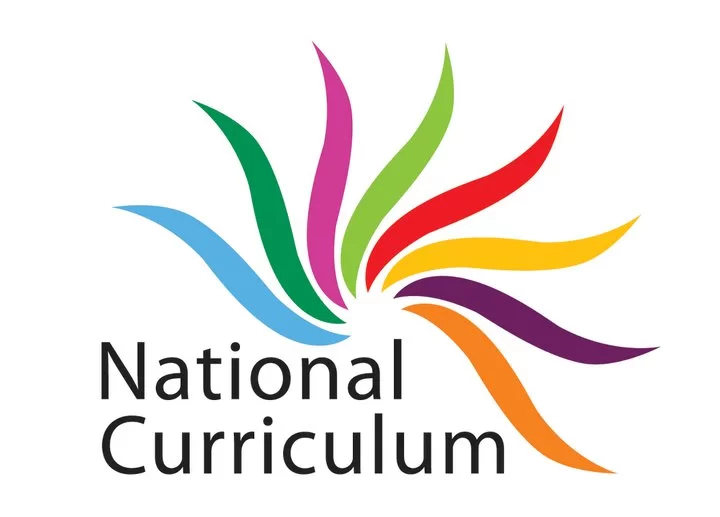
- 20 Apr 2024
Why is it in the News?
For the first time ever, the Central government has released a curriculum advisable to be taught to children aged three to six years old, thus giving an impetus to pre-school learning in 14 lakh anganwadis across the country.
About National Curriculum for Early Childhood Care and Education 2024:
- The National Curriculum for Early Childhood Care and Education 2024 introduces Aadharshila, a comprehensive 48-week curriculum tailored for children aged three to six years attending anganwadis.
- Developed through collaboration among the Ministry of Women and Child Development, the Ministry of Health and Family Welfare, the Department of School Education and Literacy, the Ministry of Education, the NCERT, the Institute of Home Economics at Delhi University, and civil society organizations, Aadharshila serves as a foundational learning framework.
??Key Features:
- The curriculum introduces a weekly play calendar, initiating with four weeks of academic activities facilitating the transition from home to Anganwadi centers through engaging play.
- Over the subsequent 36 weeks, children engage in diverse activities such as storytelling, rhymes, arts, and crafts, fostering exploration, free play, conversation, creation, and appreciation.
- Storytelling themes promote values like conflict resolution, responsibility, and cooperation.
- Children delve into topics including colors, shapes, numbers, senses, family, and friends, enhancing skills in listening, following instructions, counting, and recognizing sounds, alongside exploring themes like seasons and festivals.
- The final eight weeks focus on reinforcing previous learnings through worksheets and performance observation.
- Activities and timetables are age-specific, with detailed material requirements, variations, teacher notes, curricular goals, and competency assessments.
- The curriculum spans three years, targeting at least 48 weeks of learning, fostering skills crucial for Grade 1 transition such as listening, vocabulary, imagination, and social development.
- Special provisions ensure screening, inclusion, and referrals for children with disabilities in all activities.
- The national framework lays the foundation for states to develop culturally relevant curricula, addressing future schooling challenges effectively.
Global Alliance for Incinerator Alternatives (GAIA)
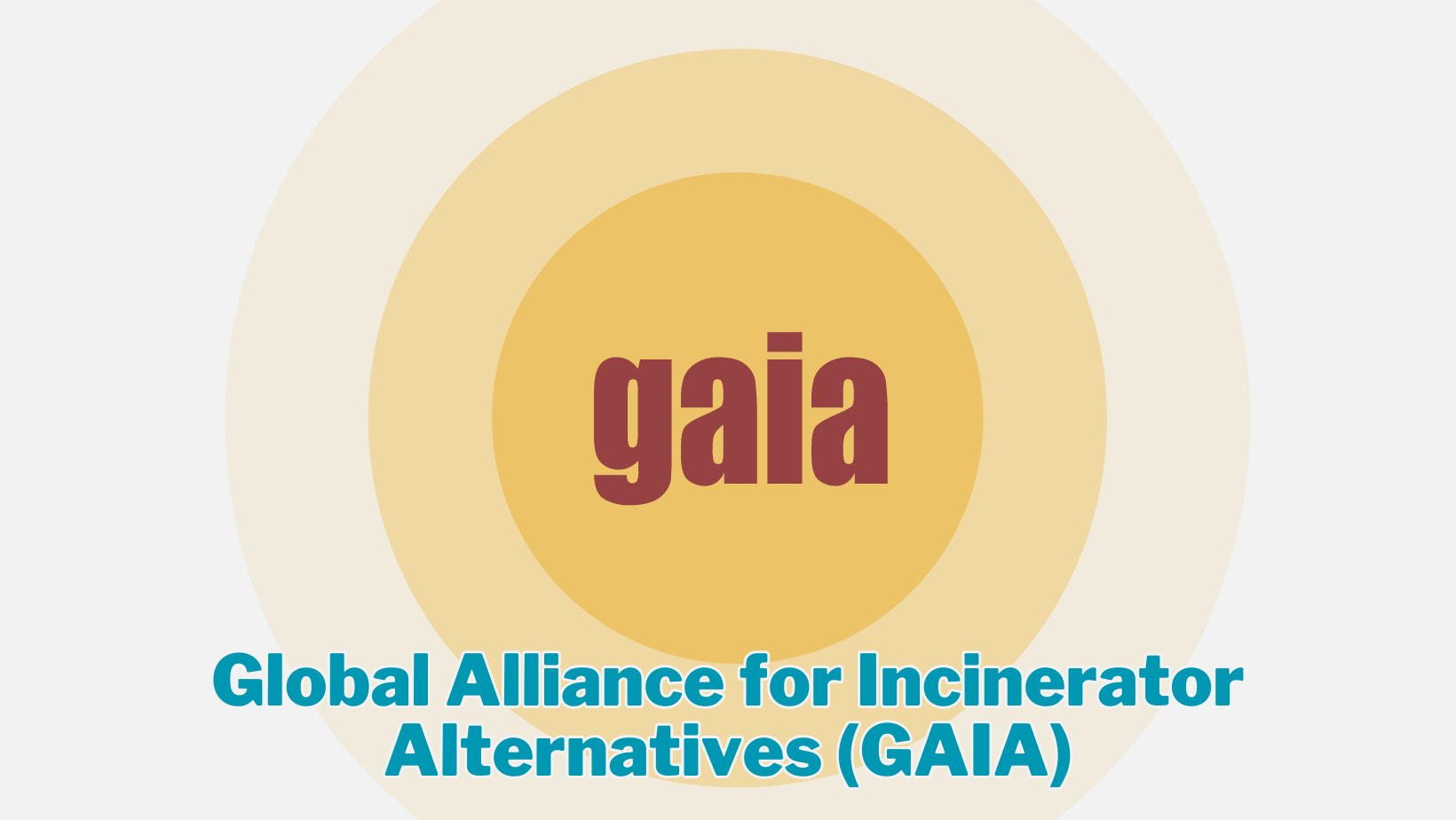
- 19 Apr 2024
Why is it in the News?
The Global Alliance for Incinerator Alternatives (GAIA) Asia Pacific, in collaboration with other environmental organizations, has called on the Association of Southeast Asian Nations (ASEAN) to take decisive action in response to plastic pollution.
About Global Alliance for Incinerator Alternatives (GAIA):
- The Global Alliance for Incinerator Alternatives (GAIA) is an alliance of over 1,000 grassroots groups, NGOs, and individuals working towards a transition from a linear, extractive economy to a circular system.
- GAIA's primary objective is to create a world that prioritizes people's right to a safe and healthy environment, free from toxic pollution and resource depletion.
- GAIA envisions a just, zero-waste world where communities' rights are respected, and ecological limits are acknowledged. To achieve this vision, the alliance focuses on:
- Eliminating Incineration: GAIA advocates for alternatives to incineration and promotes waste management practices that protect the environment and public health.
- Promoting Zero Waste: The alliance supports the adoption of zero-waste strategies, emphasizing waste reduction, reuse, and recycling to conserve resources and reduce pollution.
- Addressing Plastic Pollution: GAIA recognizes the global plastic pollution crisis and works on initiatives to reduce plastic waste and promote sustainable alternatives.
- Mitigating Climate Change: GAIA advocates for climate-friendly waste management practices, emphasizing the importance of reducing greenhouse gas emissions from waste disposal.
What is Incineration?
- Incineration is a waste treatment process that involves burning hazardous materials at high temperatures to destroy contaminants.
- This process takes place in an "incinerator," a furnace specifically designed to safely burn hazardous materials within a combustion chamber.
- Various types of hazardous materials can be treated through incineration, including soil, sludge, liquids, and gases.
- While incineration effectively destroys many harmful chemicals such as solvents, polychlorinated biphenyls (PCBs), and pesticides, it does not destroy metals like lead and chromium.
- Modern incinerators are equipped with air pollution control mechanisms, such as fabric filters, scrubbers, and electrostatic precipitators.
- These technologies help remove fly ash and gaseous contaminants generated during the incineration process, mitigating its environmental impact.
- Despite its benefits in waste treatment, incineration remains a topic of debate due to concerns about residual pollutants and the potential for contributing to greenhouse gas emissions.
United Nations Entity for Gender Equality and the Empowerment of Women (UN Women)
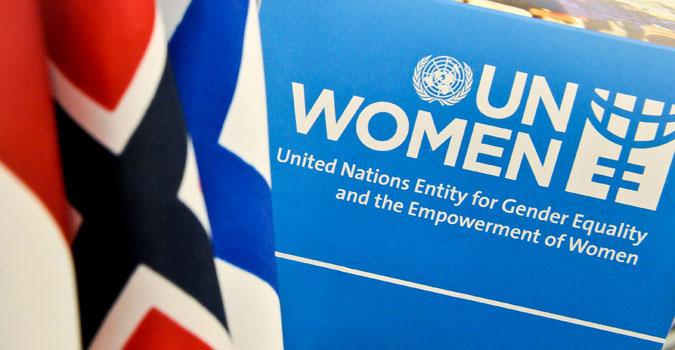
- 18 Apr 2024
Why is it in the News?
According to a recent report by UN Women, six months into the war, Gaza is facing a humanitarian crisis disproportionately impacting women and girls.
What is UN Women?
- Founded in 2010 by the United Nations General Assembly as part of the UN reform agenda.
- Merges resources and mandates to create a more significant impact on gender equality and women's empowerment.
- Serves as a global advocate for women and girls, addressing their needs and accelerating progress.
Key Roles:
- Supports intergovernmental bodies like the Commission on the Status of Women in developing policies, global standards, and norms for gender equality.
- Assists member states in implementing these standards and offers technical and financial support upon request.
- Builds effective partnerships with civil society organizations.
- Leads and coordinates the UN system's work on gender equality while promoting accountability through regular monitoring of progress.
Sustainable Development Goals (SDGs):
- Works globally to realize the SDGs for women and girls.
- Promotes women's equal participation in all aspects of life.
Country-level Support:
- Collaborates with government and non-governmental partners in countries that request assistance.
- Helps implement policies, laws, services, and resources to advance gender equality.
Grant-making Funds:
- Fund for Gender Equality: Provides grants to support innovative, high-impact programs by government agencies and civil society groups.
- UN Trust Fund to End Violence against Women: Finances initiatives that address violence against women and girls.
Commission on the Status of Women (CSW):
- A global policy-making body focused on gender equality and women's advancement.
- Operates as a functional commission of the United Nations Economic and Social Council (ECOSOC).
Information and Advocacy:
- Regularly provides information on women's rights issues to the General Assembly, ECOSOC, and the Security Council.
- Maintains the UN Secretary-General's database on violence against women, tracking measures taken by UN Member States and organizations.
- UN Women plays a vital role in advancing gender equality and women's empowerment worldwide by providing crucial support, resources, and advocacy through its various initiatives and collaborations.
B virus
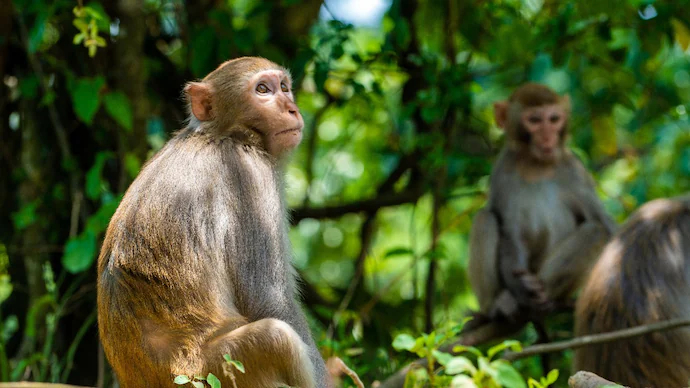
- 17 Apr 2024
Why is it in the News?
A 37-year-old man wounded by a wild monkey in Hong Kong is in intensive care suffering from infection with B virus.
What is B virus?
- B virus, also known as herpes B virus or Macacine herpesvirus 1 (McHV-1), is a type of herpesvirus found in macaque monkeys, particularly rhesus macaques.
- While asymptomatic in these animals, it can cause severe neurological complications, including encephalitis, in humans if transmitted through bites, scratches, or contact with infected bodily fluids.
Is B virus infection fatal??
- B virus infections in humans are rare but potentially fatal, with symptoms ranging from fever and headache to neurological dysfunction and death.
- Of the 50 cases reported in the US, 21 have died.
- Prompt treatment with antiviral medication is essential if exposure to B virus occurs, and preventive measures are crucial for individuals working with or handling macaques.
How does it spread??
- The transmission of this virus among humans is rare.
- So far, only one case of human-to-human transmission has been recorded.
What are the symptoms of B virus infection??
- Disease onset typically occurs within 1 month of exposure, although the actual incubation period can be as short as 3–7 days.
- The common symptoms seen during the infection are:
- Fever, headache, myalgia, and localized neurologic symptoms (e.g., pain, numbness, itching) might occur near the wound site.
- Lymphadenitis, lymphangitis, nausea, vomiting, and abdominal pain also can occur.
Treatment:
- The treatment for B virus includes providing antiviral medications.
United Nations Conference on Trade and Development (UNCTAD)
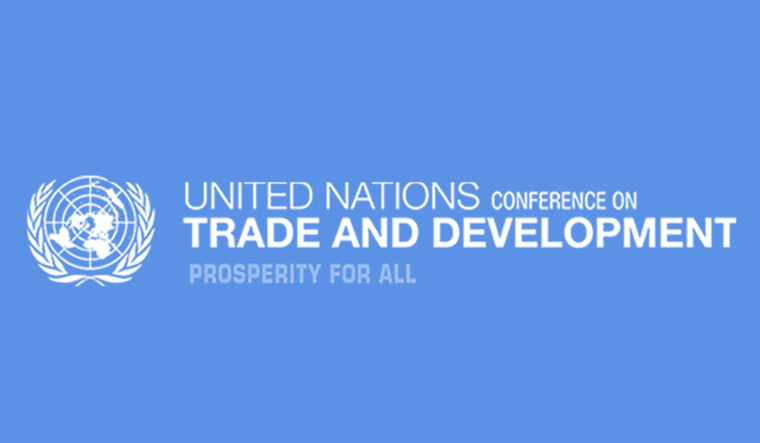
- 17 Apr 2024
Why is it in the News?
Global trade dynamics are expected to remain sluggish in 2024, the United Nations Conference on Trade and Development (UNCTAD) has warned.
Key Highlights of the Report:
- UNCTAD’s latest projections indicate global growth of 2.6 percent in 2024, slightly slower than in 2023.
- This marks the third consecutive year in which the global economy will grow at a slower pace than before the pandemic when the average rate for 2015–2019 was 3.2 percent.
India’s growth is expected to be marginally lower than in 2023:
- Regarding India, the report stated that the economy grew at 6.7 percent in 2023 and is expected to be marginally lower at 6.5 percent in 2024.
- It noted that the expansion in 2023 was influenced by strong public investment and the services sector, which received a boost from robust local demand for consumer services along with assured external demand for business services exports.
- The Reserve Bank of India (RBI) is expected to keep interest rates constant in the near term, while strong public investment expenditures will offset restrained public consumption spending.
About the United Nations Conference on Trade and Development (UNCTAD):
- The United Nations Conference on Trade and Development (UNCTAD) is an intergovernmental organization established in 1964 to promote the interests of developing countries in global trade.
- With its headquarters in Geneva, Switzerland, UNCTAD has 195 member states and collaborates with numerous nongovernmental organizations worldwide.
- The organization focuses on formulating policies related to various aspects of development, including trade, aid, transport, finance, and technology.
- UNCTAD plays a crucial role in addressing the concerns of developing countries regarding international institutions, such as the World Trade Organization (WTO), the International Monetary Fund (IMF), and the World Bank.
- By providing a platform for these countries to discuss and tackle their unique challenges, UNCTAD contributes to global economic development and reduces inequalities.
- Some notable achievements of UNCTAD include the establishment of the Global System of Trade Preferences (now replaced by the World Trade Organization), which reduces tariffs and removes non-tariff trade barriers, the Common Fund for Commodities, providing financial assistance to countries dependent on commodity exports, and various agreements for debt relief.
- In recent years, UNCTAD has focused on addressing globalization challenges and helping the least developed countries integrate into the global economy.
Trade and Economic Partnership Agreement (TEPA)
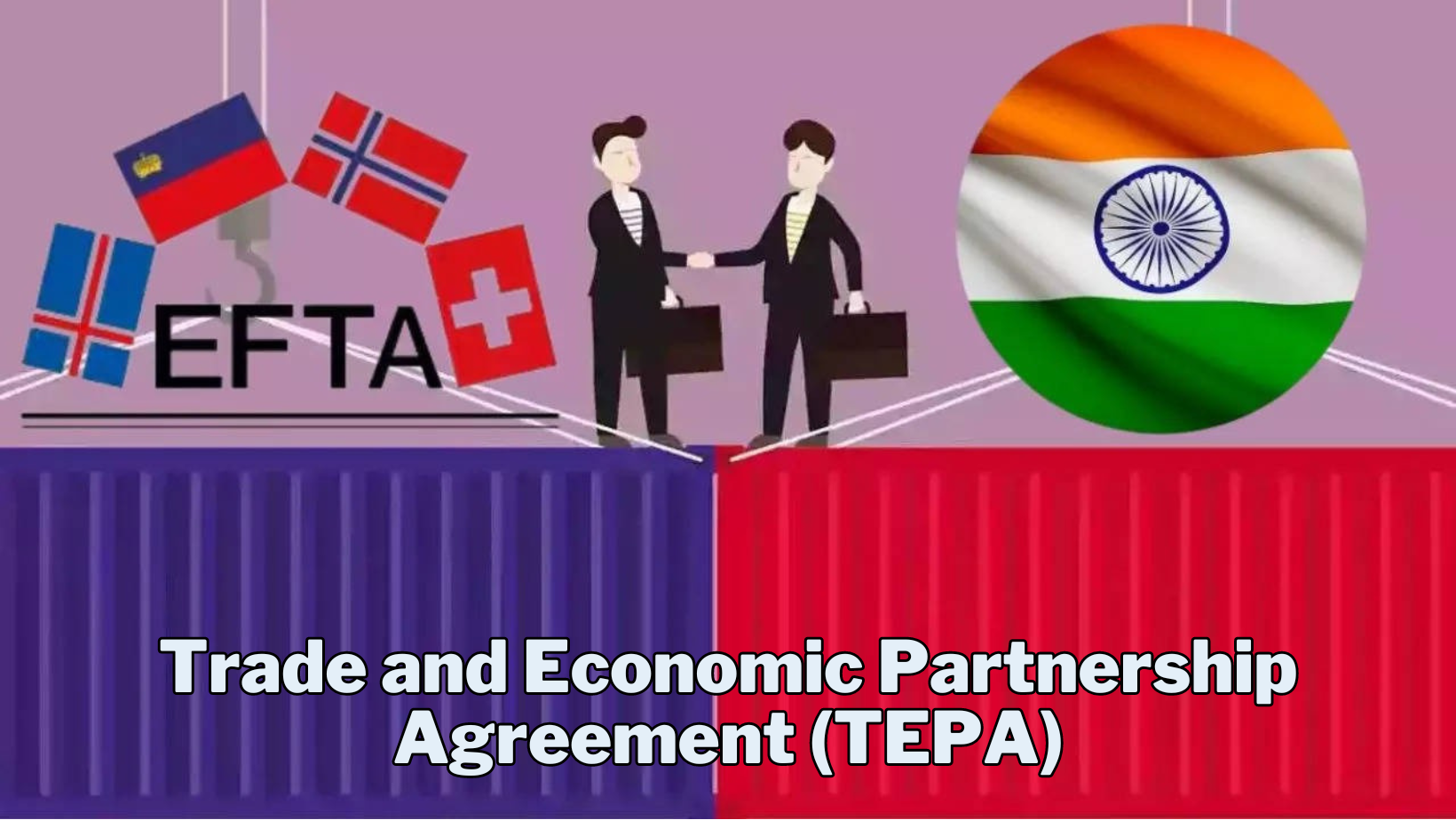
- 16 Apr 2024
Why is it in the News?
The new approach to intellectual property and investment through FTAs accepts an IP maximalist agenda of the United States Trade Representative; it threatens to upset the fine balance between public and private interests and push India away from essential innovations.
What is the Trade and Economic Partnership Agreement (TEPA)?
- The TEPA is a pact designed to foster trade and investment opportunities between India and the European Free Trade Association (EFTA).
- It endeavors to diminish or eliminate tariffs and non-tariff barriers across various product categories.
Objectives:
- Facilitate trade and investment by reducing tariffs and non-tariff barriers.
- Ensure equitable and transparent market access for service providers and investors.
- Enhance cooperation concerning the protection and enforcement of intellectual property rights.
- Streamline trade procedures, promote customs cooperation, and establish effective mechanisms for dispute resolution.
Coverage:
- The agreement encompasses 14 chapters, addressing key areas such as:
- Trade in goods
- Rules of origin
- Intellectual property rights (IPRs)
- Trade in services
- Investment promotion and cooperation
- Government procurement
- Technical barriers to trade
- Trade facilitation
- By addressing these comprehensive aspects, the TEPA seeks to bolster economic collaboration and foster mutually beneficial outcomes for both India and EFTA member states.
What is the European Free Trade Association (EFTA)?
- EFTA is an intergovernmental organization of four member countries that are not part of the European Union (EU): Iceland, Liechtenstein, Norway, and Switzerland.
- The association was set up in 1960 to promote closer economic cooperation and free trade in Europe.
How important is EFTA?
- Iceland, Liechtenstein, Norway, and Switzerland have a combined population of less than 14 million.
- But their association punches above its weight in terms of trade figures.
- In 2021, EFTA was the tenth-largest trader in the world in merchandise trade and the eighth-largest in trade in services.
What is EFTA’s history?
- EFTA was established in 1960 by seven countries: Austria, Denmark, Norway, Portugal, Sweden, Switzerland, and the United Kingdom.
- Iceland and Liechtenstein joined EFTA in 1970 and 1991, respectively.
- Denmark, the UK, Portugal, Austria, and Sweden then left EFTA to join the EU between 1973 and 1995.
Special Olympics Bharat
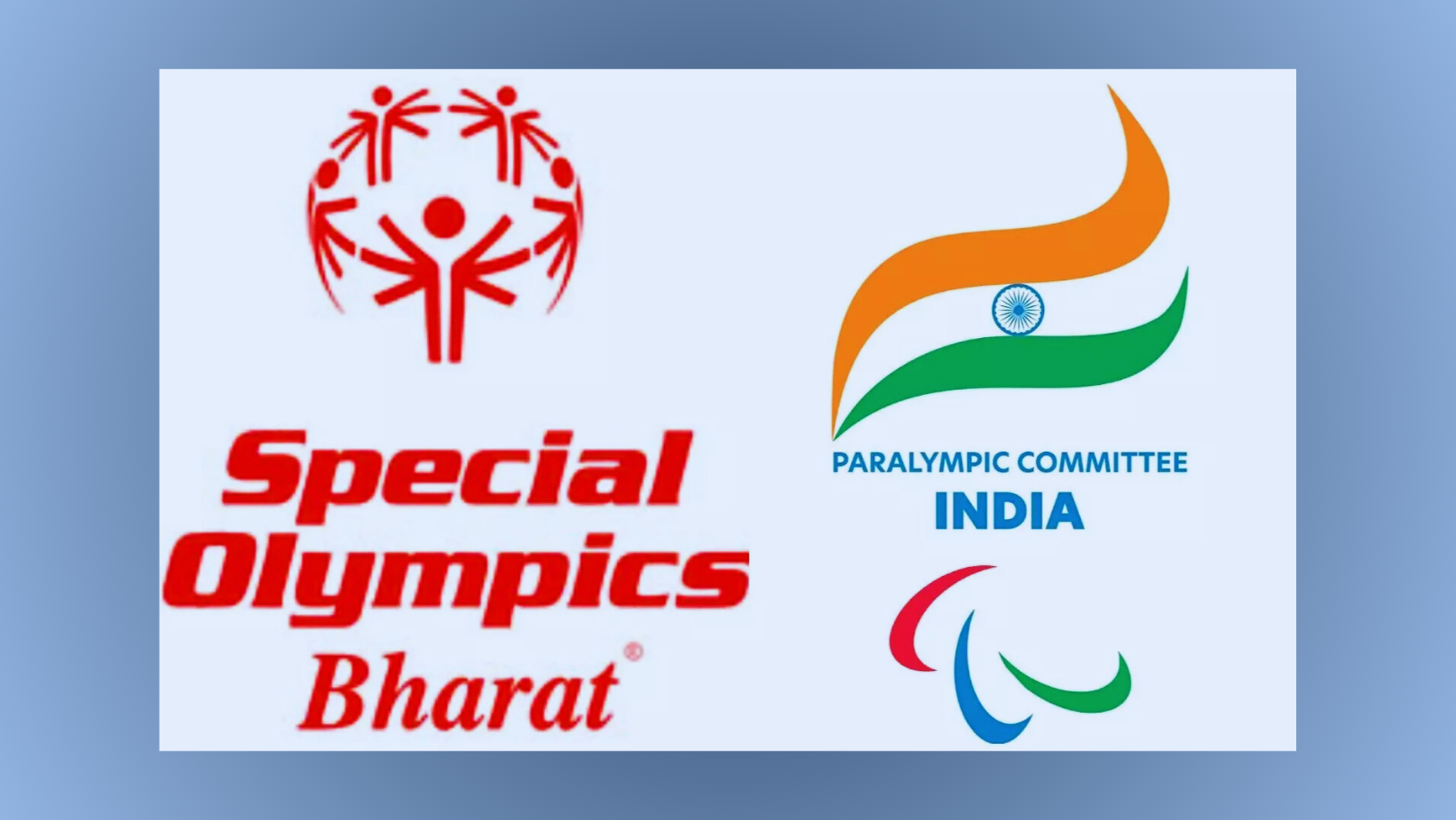
- 15 Apr 2024
Why is it in the News?
Special Olympics Bharat (SOB), a National Sports Federation of India is forming district units across Tamil Nadu through elections on April 22.
About Special Olympics Bharat:
- Special Olympics Bharat is a National Sports Federation also registered under the Indian Trust Act 1882 in 2001 and is accredited by Special Olympics International to conduct Special Olympics Programs in India.
- It is recognized by the Ministry of Youth Affairs & Sports, Government of India as a National Sports Federation in the Priority Category, for the development of Sports for Persons with Intellectual Disabilities.
- It is a designated Nodal Agency for all disabilities on account of its national presence and experience, especially in rural areas which account for nearly 75 percent of the disabled population in India.
- Mission: The mission of Special Olympics is to provide year-round sports training and athletic competition in a variety of Olympic-type sports for children and adults with intellectual disabilities, giving them continuing opportunities to develop physical fitness, demonstrate courage, experience joy, and participate in a sharing of gifts, skills, and friendship with their families, other Special Olympics athletes and the community.
- Special Olympics Bharat works towards the social acceptance of people with intellectual disabilities, whereby they are respected and given equal chances to become productive citizens.
- They encourage athletes to move from the Special Olympics training and competition into school and community programs where they can compete in regular sports activities.
Special Olympics Bharat strives to:
- Focus on holistic development and training that goes beyond the classrooms into the playing fields, cultural and community centers, to motivate children with disabilities to join and remain in school
- Create role models who will inspire the children and also motivate parents to send their children to school and to participate in sports and other extra-curricular activities
- Train teachers to sensitize them to the needs of special children, and create a cadre of physical education teachers from among the disabled who can work with schools and community centers
- Ensure maximum involvement of the community for greater public understanding and acceptance of people with intellectual disabilities.
- Ensure all Special Olympics Bharat activities local, state, national, and international reflect the Olympic movement values, standards, ceremonies, and events.
What is Intellectual Disability?
- Intellectual disability is a lifelong condition that affects a person’s intellectual skills and their behaviour in different situations.
- It can include difficulties in communication, memory, understanding, problem-solving, self-care, social and emotional skills, and physical skills.
- People with intellectual disability have the same feelings, rights, and aspirations as everyone else.
- Intellectual disability does not define who a person is, how they should be treated, or how they want to live.
- An IQ test determines whether a person has an intellectual disability. IQ scores lower than 70 indicate an intellectual disability.
Precautionary Principle
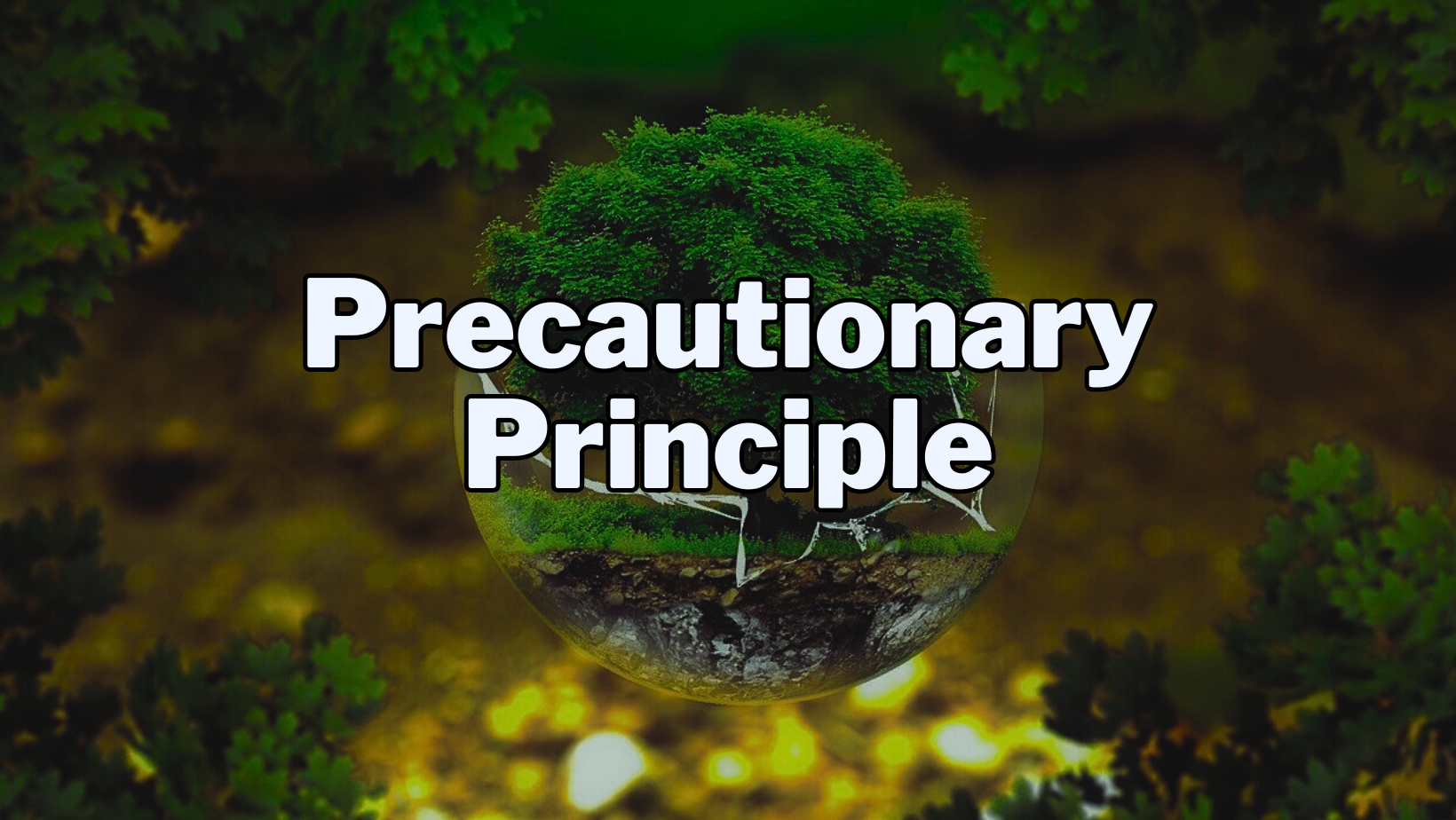
- 15 Apr 2024
Why is it in the News?
The precautionary principle is becoming an established guideline for policymakers tackling environmental problems according to British environmentalist Norman Myers
What is the Precautionary Principle?
- The Precautionary Principle serves as a foundational concept in policymaking, advocating for the adoption of proactive measures to mitigate potential risks to public health or the environment:
- Proactive Risk Management: The principle legitimizes the implementation of preventative measures in situations where there are uncertainties regarding the extent of harm posed by certain activities or policies.
- Rather than waiting for conclusive scientific evidence, decision-makers are encouraged to take preemptive action to prevent serious or irreversible damage.
- Scientific Uncertainty: It acknowledges that in cases where scientific certainty is lacking, waiting for conclusive evidence before taking action may result in significant harm.
- Therefore, the principle emphasizes the importance of not using the absence of full scientific certainty as a justification for delaying necessary measures to prevent environmental degradation or protect public health.
- Risk-Averse Approach: By advocating for precautionary action, even in the absence of absolute certainty about potential harm, the principle prioritizes safety and prudence.
- It underscores the importance of erring on the side of caution to safeguard against potential risks, thus emphasizing a preventive rather than reactive approach.
- International Recognition: Originating in the 1970s, the Precautionary Principle has gained international recognition and has been enshrined in various international treaties and conventions related to environmental protection.
- It has been incorporated into the legal frameworks of organizations such as the European Union and has influenced decisions on issues ranging from climate change to biodiversity conservation.
- Application in Policy: The principle has influenced the development of laws and regulations worldwide, shaping policies related to endangered species, climate change, and genetically modified organisms (GMOs).
- Notably, it has played a significant role in determining the European Union's stance on GMOs and has been integral to the formulation of EU environmental law.
- The Precautionary Principle emphasizes the importance of taking proactive measures to address potential risks, particularly in situations where scientific evidence is uncertain but the potential consequences are significant.
- It embodies a proactive and risk-aware approach to policymaking, intending to prevent harm and promote sustainable development.
About Jim Corbett National Park:
- Jim Corbett National Park, named after the renowned naturalist and conservationist Jim Corbett, is situated in Uttarakhand's Nainital district.
- As the oldest national park in India, it was initially established as Hailey National Park in 1936 to protect the endangered Bengal tiger.
- The park is an integral part of the larger Corbett Tiger Reserve, with the Patli Dun Valley forming its core area.
- The Ramganga River flows through the park, contributing to its diverse ecosystem.
- Not only is it known for its rich biodiversity, but also for being the first area to come under the Project Tiger initiative in 1973.
Operation Meghdoot
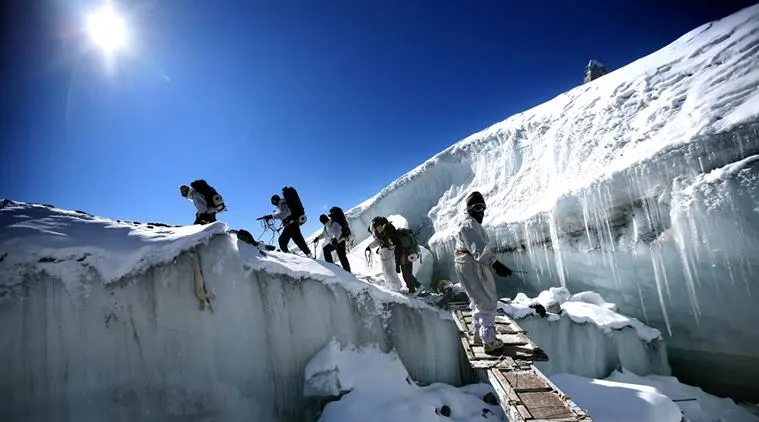
- 15 Apr 2024
Why is it in the News?
India commemorates 40 years since the launch of Operation Meghdoot, a critical mission to secure the strategic heights of the Siachen glacier, acknowledged as the highest battlefield in the world.
About Operation Meghdoot:
- Operation Meghdoot was the codename for the Indian Army operation to take full control of the (Siachen Glacier in Ladakh).
- It was launched in 1984 and it was unique as it involved the first assault on the world's highest battlefield.
- This operation was launched on April 13, 1984, by the Indian Army and Indian Air Force (IAF), marking a pivotal moment in securing the Siachen Glacier, a strategically crucial region dominating Northern Ladakh.
- The operation involved airlifting Indian Army soldiers, with IAF helicopters operating in the area since 1978, including the first landing of an IAF helicopter on the glacier in October 1978.
- The need for Operation Meghdoot arose due to Pakistan's cartographic aggression in Ladakh, allowing foreign mountaineering expeditions in Siachen.
- Intelligence inputs about impending Pakistani military action prompted India to secure strategic heights on Siachen, deploying troops via airlifts and air-dropping supplies to high-altitude airfields.
What was IAF's Role and Evolution in Operation Meghdoot?
- The IAF played a crucial role in supporting Operation Meghdoot, initially focusing on transport and helicopter aircraft for troop and material transport.
- Gradually, the IAF expanded its role, deploying fighter aircraft like the Hunter, MiG-23s, and MiG-29s, operating from high-altitude airfields at Leh and Thoise.
- This expanded role included fighter sweeps and simulated strikes over the glacier, boosting morale and deterring adversaries.
- Operating on the highest battlefield globally, IAF helicopters are the lifeline for Indian troops, providing crucial support in emergencies, logistics supply, and evacuating the sick and wounded from the glacier.
- As the Indian Army celebrates 40 years on the Siachen Glacier, it reflects not only on the progress made in technological advancements and logistical improvements but also on the sacrifices and dedication of its personnel.
- 'Operation Meghdoot' stands as a testament to India's commitment to safeguarding its borders and ensuring the well-being of its troops in one of the world's most challenging terrains.
About Siachen Glacier:
- The Siachen Glacier, situated in the Eastern Karakoram range of the Himalayas, is located just northeast of Point NJ9842, where the Line of Control (LOC) between India and Pakistan ends.
- Administered by India since Operation Meghdoot in 1984, the glacier spans from northwest to southeast, originating at the Indira Col West and descending from an altitude of 6,115 meters to 3,570 meters.
- As the second-longest glacier in the world's non-polar areas, the Siachen Glacier is surpassed only by Tajikistan's Fedchenko Glacier.
- It lies south of the significant drainage divide separating the Eurasian Plate from the Indian subcontinent in the glaciated Karakoram region, sometimes referred to as the "Third Pole."
- The Nubra River finds its source in the Siachen Glacier, highlighting the glacier's ecological importance.
Defence Attaché (DA)
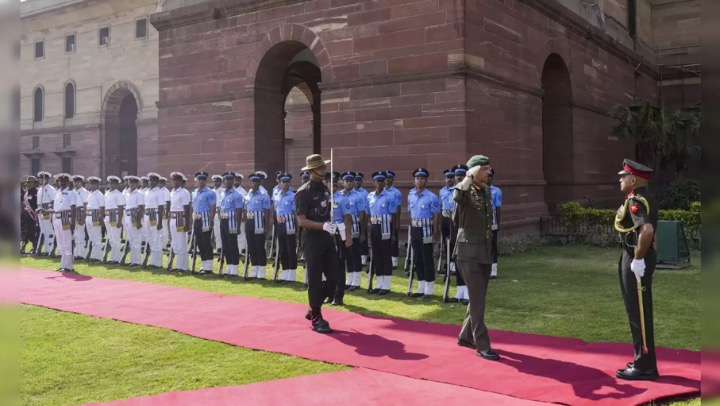
- 13 Apr 2024
Why is it in the News?
As India expands its presence in defense diplomacy and plans to deploy Defense Attachés to Indian missions in Africa, Armenia, and the Philippines, experts and experienced diplomats advise against simply "rationalizing" their numbers.
What’s a Defense Attaché?
- According to the Geneva Centre for the Democratic Control of Armed Forces (DCAF), a defence attaché is a member of the armed forces serving at an embassy as a “representative of his/her country’s defence establishment abroad and in this capacity enjoys the diplomatic status and immunity.
- The defence attaché’s work usually concerns bilateral military and defence relations.
- Some countries send attachés for security issues, such as migration or matters relating to police and justice.
- The defence attachés are also responsible for facilitating communication and cooperation between their home nation’s armed forces and the host country’s military.
- They act as military and/or security advisors to their country’s ambassador and embassy staff.
- They can also promote their home nation’s military weapons industry.
- Defence attachés collect and examine military intelligence, facilitate military cooperation pacts, and give an evaluation of security issues to their home country’s government.
- They also act as a link between diplomats and the military.
India to Send Defence Attachés to New Countries:
- India has started dispatching defence attachés to many new countries, while reportedly downsizing the military personnel at its missions in some other nations.
- 15-16 new attaches from the Indian Navy, the Indian Air Force (IAF), and the Indian Army are being posted to Poland, the Philippines, Armenia, and the African countries of Tanzania, Mozambique, Djibouti, Ethiopia, and Ivory Coast.
- In the next phase, 10 entirely new defence wings will be created in different countries, with a particular focus on nations to which arms can be exported.
Why the Other Countries Matter?
- India dispatching a defense attaché to Poland, which is a part of the European Union (EU) and has emerged as an important security partner in Europe in recent years, is also significant.
- The EU posted a military attaché to its mission in India for the first time last year. India’s move to do the same in Poland is “reflective of the desire to expand two-way defence ties.
- Armenia has become a major exporter of India’s arms.
- India has already inked deals with the Asian country for Pinaka rockets, Akash missiles, ammunition, and multi-barrel rocket launchers, with some of them coming amid Armenia’s clash with Azerbaijan over Nagorno-Karabakh.
- Armenia has shown interest in expanding its defence ties with India.
- China’s military assertiveness in the South China Sea has prompted India to grow military ties with ASEAN countries.
- India’s decision to send defence attachés for the first time to the Philippines comes in the wake of the sale of Indian arms to Manila.
- India signed a $375 million deal with the Philippines in 2022 to supply three batteries of the BrahMos missile and will soon start the delivery of the missiles to the Southeast Asian country.
Science Based Targets Initiative (SBTi)
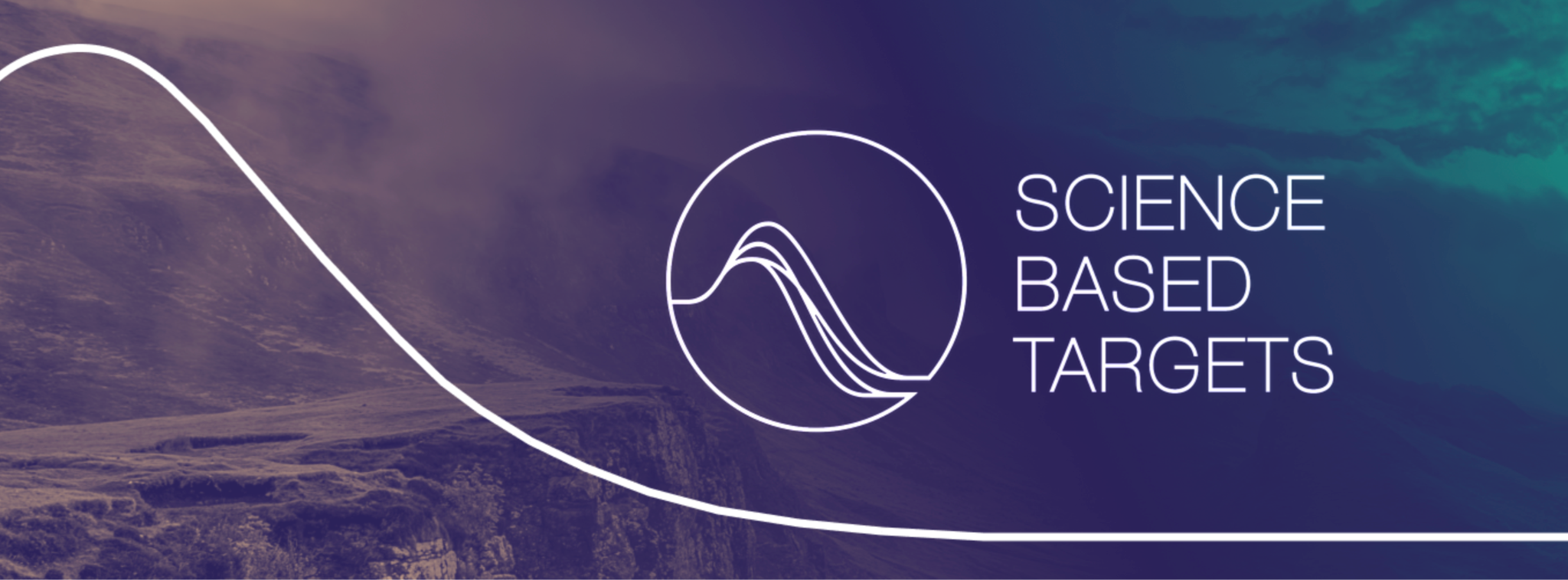
- 13 Apr 2024
Why is it in the News?
A contentious recent decision by the Science Based Targets Initiative (SBTi), permitting carbon offsetting for Scope 3 emissions of businesses with SBTi-based climate targets, has stirred controversy and skepticism.
About Science Based Targets Initiative (SBTi):
- The Science-based Targets Initiative (SBTi) is a global movement launched post the 2015 Paris Climate Agreement to mobilize companies in combating climate change.
- SBTi supports businesses in their decarbonization projects, ensuring compatibility with limiting global temperature rise to 1.5C° and achieving carbon neutrality by 2050.
- Backed by a scientific method, SBTi verifies company objectives are aligned with COP21 goals.
- SBTi was initiated by four international organizations:
- United Nations Global Compact (UNGC)
- World Wildlife Fund (WWF)
- Carbon Disclosure Project (CDP)
- World Resource Institute (WRI)
- The primary objective of SBTi is to guide businesses in setting greenhouse gas (GHG) emission reduction targets that align with the Paris Agreement, are scientifically valid, and contribute significantly to reducing global emissions.
To determine a 1.5C° trajectory compatibility, SBTi uses science-based targets that account for the following factors:
-
- A carbon budget focused on achieving the 1.5C° global warming limit.
- GHG emission scenarios from the IPCC or the IEA.
- Emission allocation method: emission intensity reduction, absolute emission reduction, or emission intensity convergence toward a sector-specific reference level
- Through this methodology, companies can establish clear and science-based GHG reduction targets, effectively contributing to global emission reduction efforts.
SBTi's Net Zero objective:
- In October 2021, SBTi introduced its "Net Zero" benchmark, challenging committed companies to achieve long-term reduction targets up to carbon neutrality.
The Net Zero goal builds upon the initial SBT approach and focuses on four essential components:
-
- Short-term targets: To align with the 1.5°C objective, companies must set targets for reducing their total emissions (Scopes 1, 2, and 3) within a maximum of 5 to 10 years.
- Long-term objectives: Alongside short-term targets, Net Zero requires companies to define long-term goals compatible with limiting global warming to 1.5°C and achieve them by 2050 (or 2040 for the energy sector).
- Carbon finance for short-term contributions: Companies are encouraged to invest in external carbon sequestration or avoidance projects by purchasing carbon credits, complementing their GHG reduction efforts. SBTi prioritizes sequestered emissions over avoided emissions, considering the latter's carbon credits less reliable.
- Neutralization: As the final stage in reaching carbon neutrality, companies must minimize residual emissions and then offset them through carbon sequestration actions.
- The SBTi movement has rapidly gained international recognition for its rigor, reliability, and the credibility of the people behind it.
- Several thousand companies of all sizes have rapidly adopted the scientific approach it promotes. To date, nearly 6,800 companies worldwide have signed up to the SBTi.
Invasive Alien Species
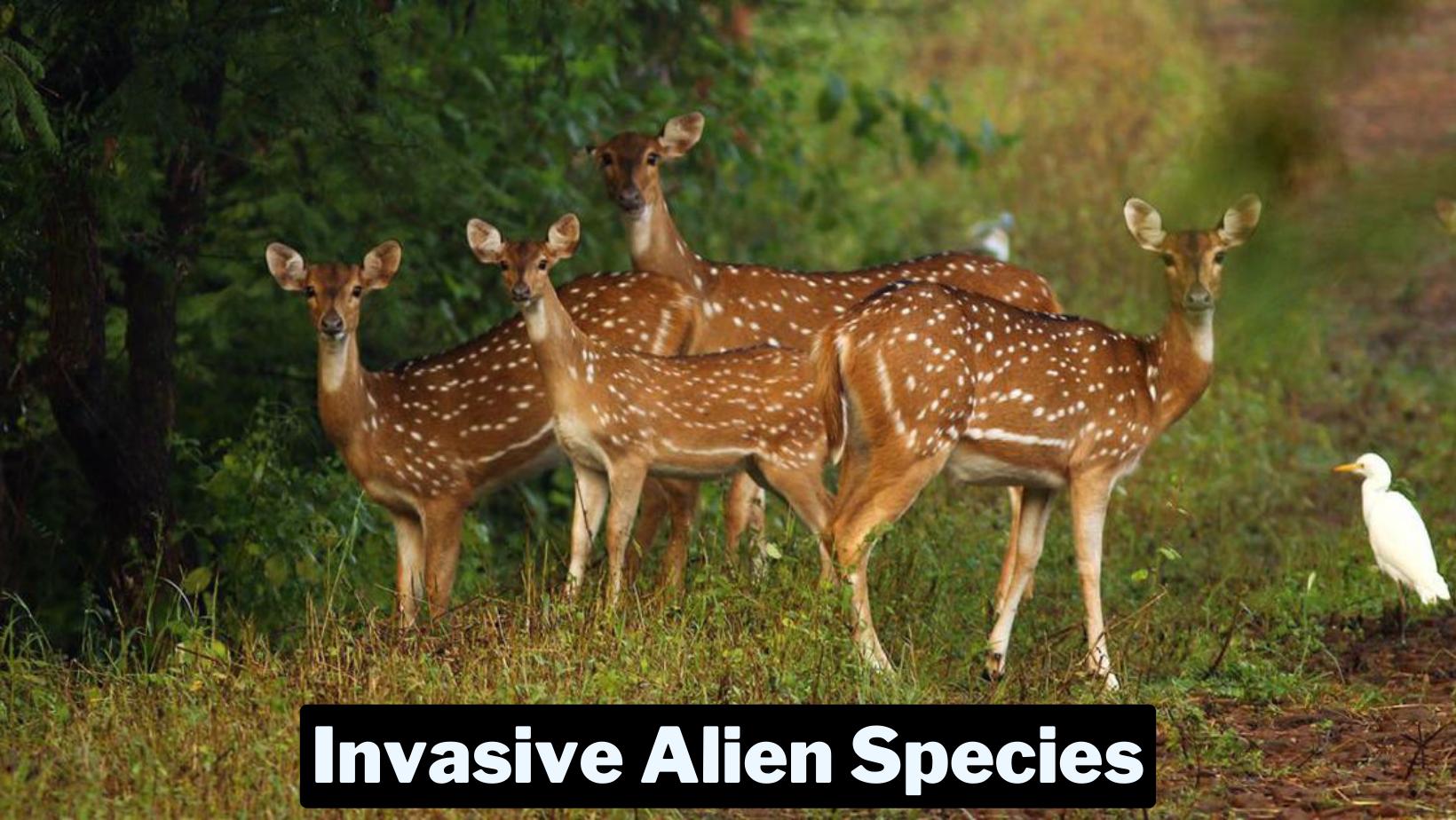
- 11 Apr 2024
Why is it in the News?
In a bid to manage the teeming population of chital (spotted deer) in Ross Island (officially known as the Netaji Subhash Chandra Bose Island), the Andaman and Nicobar Islands administration recently sought help from the Wildlife Institute of India.
What are Invasive Alien Species (IAS)?
- According to the Convention on Biological Diversity (CBD), Invasive alien species are plants, animals, pathogens, and other organisms that are non-native to an ecosystem, and which may cause economic or environmental harm or adversely affect human health.
- In particular, they impact adversely upon biodiversity, including the decline or elimination of native species - through competition, predation, or transmission of pathogens - and the disruption of local ecosystems and ecosystem functions.
- Invasive alien species, introduced and/or spread outside their natural habitats, have affected native biodiversity in almost every ecosystem type on Earth and are one of the greatest threats to biodiversity.
- Since the 17th century, invasive alien species have contributed to nearly 40% of all animal extinctions for which the cause is known (CBD, 2006).
- The problem continues to grow at great socio-economic, health, and ecological costs around the world.
- Invasive alien species exacerbate poverty and threaten development through their impact on agriculture, forestry, fisheries, and natural systems, which are an important basis of people’s livelihoods in developing countries.
- This damage is aggravated by climate change, pollution, habitat loss, and human-induced disturbance.
What are Some Examples of Invasive Wildlife in India?
- The list of invasive wildlife in India is dominated by certain species of fish such as the African catfish, Nile tilapia, red-bellied piranha, and alligator gar, and turtle species such as the red-eared slider.
- The red-eared slider, for instance, is a favorite among India’s exotic pet owners, and many have been abandoned in local water bodies.
- This turtle, native to North America, notoriously edges out local freshwater species, owing to its fast rates of reproduction, and the following competition for food.
- With regards to species of fish, many were introduced in India to feed the demand for those maintaining aquariums.
- For instance, the African catfish was brought over from Bangladesh specifically for aquaculture purposes. “
- The occurrence of C gariepinus (the species’ scientific name) has been reported from several inland systems of India including the mighty rivers like Ganga, Yamuna, Sutlej, Godavari, Periyar River, and the lakes like Vembanad Lake.
How do IAS Impact Native Flora and Fauna?
- The invasive species act as disruptors in the food chain and disturb the balance of the ecosystem.
- In habitats where there is no competition, invasive species can dominate the entire ecosystem
- For instance, “in Keoladeo Park, Bharatpur in Rajasthan, which is a UNESCO World Heritage site, the African catfish have been known to prey on waterfowls and migratory birds as well.
- Studies have shown that the proliferation of chital in the Andamans has affected the regeneration of native vegetation, as the deer are known to consume seeds and seedlings.
National Investment and Infrastructure Fund (NIIF)
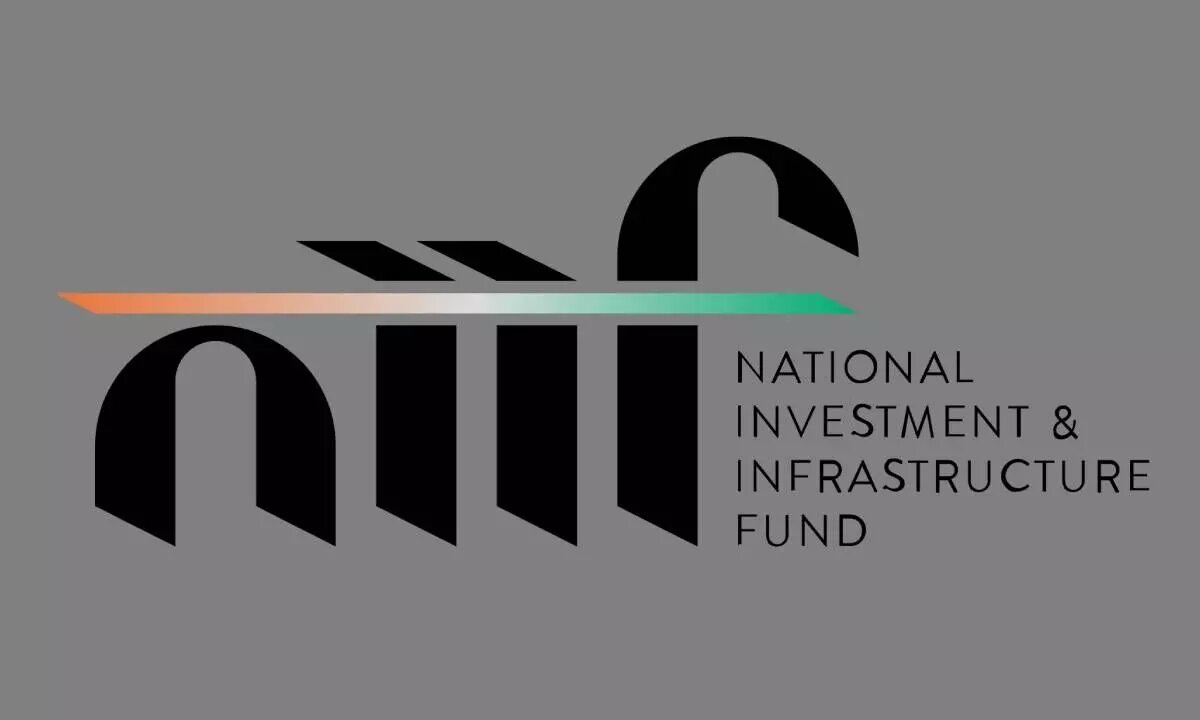
- 11 Apr 2024
Why is it in the News?
iBUS, a digital infrastructure solutions company, said recently it has raised $200 million from the government-backed National Investment and Infrastructure Fund Limited (NIIF).
What is the National Investment and Infrastructure Fund (NIIF)?
- The National Investment and Infrastructure Fund (NIIF) stands as a pioneering fund manager dedicated to investing in India's infrastructure and related sectors.
- Established in 2015, NIIF marks India's inaugural sovereign wealth fund (SWF), embodying a collaborative investment platform for both international and domestic investors.
Key Aspects of NIIF:
- Investment Mandate: NIIF operates with a mandate to deploy equity capital into domestic infrastructure projects, spanning greenfield, brownfield, and stalled ventures.
- Its investment horizon extends across diverse asset classes, including infrastructure, private equity, and other sectors, all aimed at delivering attractive risk-adjusted returns.
- Ownership and Independence: With 49% ownership by the Indian government, NIIF boasts over $4.9 billion in assets under management, solidifying its status as the nation's largest infrastructure fund.
- Despite its close ties with the government, NIIF maintains autonomy in its investment decisions, ensuring a professional and impartial approach to its operations.
- Professional Management: The fund is predominantly owned by institutional investors and managed by a proficient team with expertise in both investments and infrastructure.
- This professional oversight ensures the strategic deployment of capital and efficient management of investments.
- Regulatory Compliance: NIIF operates within the regulatory framework as an Alternative Investment Fund (AIF) registered with the Securities Exchange Board of India (SEBI).
- It actively raises capital from a spectrum of domestic and international institutional investors, further bolstering its financial resources.
NIIF manages capital through four distinct funds:
- NIIF Master Fund: Focused on infrastructural projects such as roads, ports, airports, and power, it stands as India's largest infrastructure fund.
- NIIF Private Markets Fund: Invests in infrastructure and associated sectors through third-party managed funds.
- NIIF Strategic Opportunities Fund: Devoted to developing large-scale businesses and greenfield projects deemed strategically significant for the nation.
- India-Japan Fund: NIIF's bilateral initiative aimed at environmental preservation in India, with contributions from both the Indian government and the Japan Bank for International Cooperation.
- NIIF catalyzes fostering sustainable infrastructure development in India while facilitating fruitful collaborations between Indian and international stakeholders, exemplifying a robust model for investment-driven growth.
African Baobab Tree

- 11 Apr 2024
Why is it in the News?
In a groundbreaking conservation endeavor, the Global Society for the Preservation of Baobabs and Mangroves (GSPBM) has initiated a mission to rejuvenate the iconic Baobab trees.
About the African Baobab Tree:
- African baobab trees, scientifically known as Adansonia Digitata, are some of the oldest living organisms in the world.
- Baobab trees originated millions of years ago in West Africa and spread over time to other parts of the world, creating new species.
- There are 9 baobab species, of which 6 have originated in Madagascar, 2 in Australia, and 1 in Africa.
- These trees range in height from 5 to 20 meters and are typically found in deciduous forests composed primarily of broad-leaved trees that shed their leaves during one season.
- It is one of nine species of baobab, is native to mainland Africa, and also thrives in the African savanna ecosystem.
- The savanna features warm temperatures year-round and experiences its highest seasonal rainfall in the summer.
- It is characterized by grasses and dispersed trees, allowing ample sunlight to reach the ground.
- Age Record: Carbon-14 dating has revealed that an African baobab specimen in Namibia is approximately 1,275 years old, making it the oldest known angiosperm tree.
- Tree of Life: African baobabs, being succulents, absorb and store water in their expansive trunks during the rainy season.
- This unique adaptation enables them to produce nutrient-dense fruit during the dry season, even in arid environments.
- Utilization: Baobab trees, with lifespans exceeding a thousand years, offer a multitude of benefits including food, fodder for livestock, medicinal compounds, and raw materials for various purposes.
- Threats: Since 2005, nine of the thirteen oldest African baobab specimens and five of the six largest trees have either perished or experienced significant decline, possibly due to the impacts of climate change.
What are Angiosperms?
- Angiosperms, a taxonomic class of plants, are characterized by seeds enclosed within an ovule, such as those found in apples.
- This group is commonly known as hardwoods.
- Angiosperms typically comprise trees with broad leaves that undergo color changes and shed annually during autumn.
- Examples of deciduous angiosperms include oaks, maples, and dogwoods. However, certain angiosperms, such as rhododendrons, live oaks, and sweet bay magnolias, retain their leaves.
Gymnosperms:
- Gymnosperms, another taxonomic class, encompass plants with seeds not enclosed in an ovule, as seen in pine cones.
- The term "gymnosperm" translates to "naked seed," and this group is often referred to as softwoods.
- Gymnosperms commonly feature needle-like leaves that remain green throughout the year. Examples include pines, cedars, spruces, and firs.
- While many gymnosperms maintain their foliage year-round, some, like ginkgos, dawn redwoods, and bald cypresses, do shed their leaves.
India Imposed Import Restrictions on Solar PV Cells
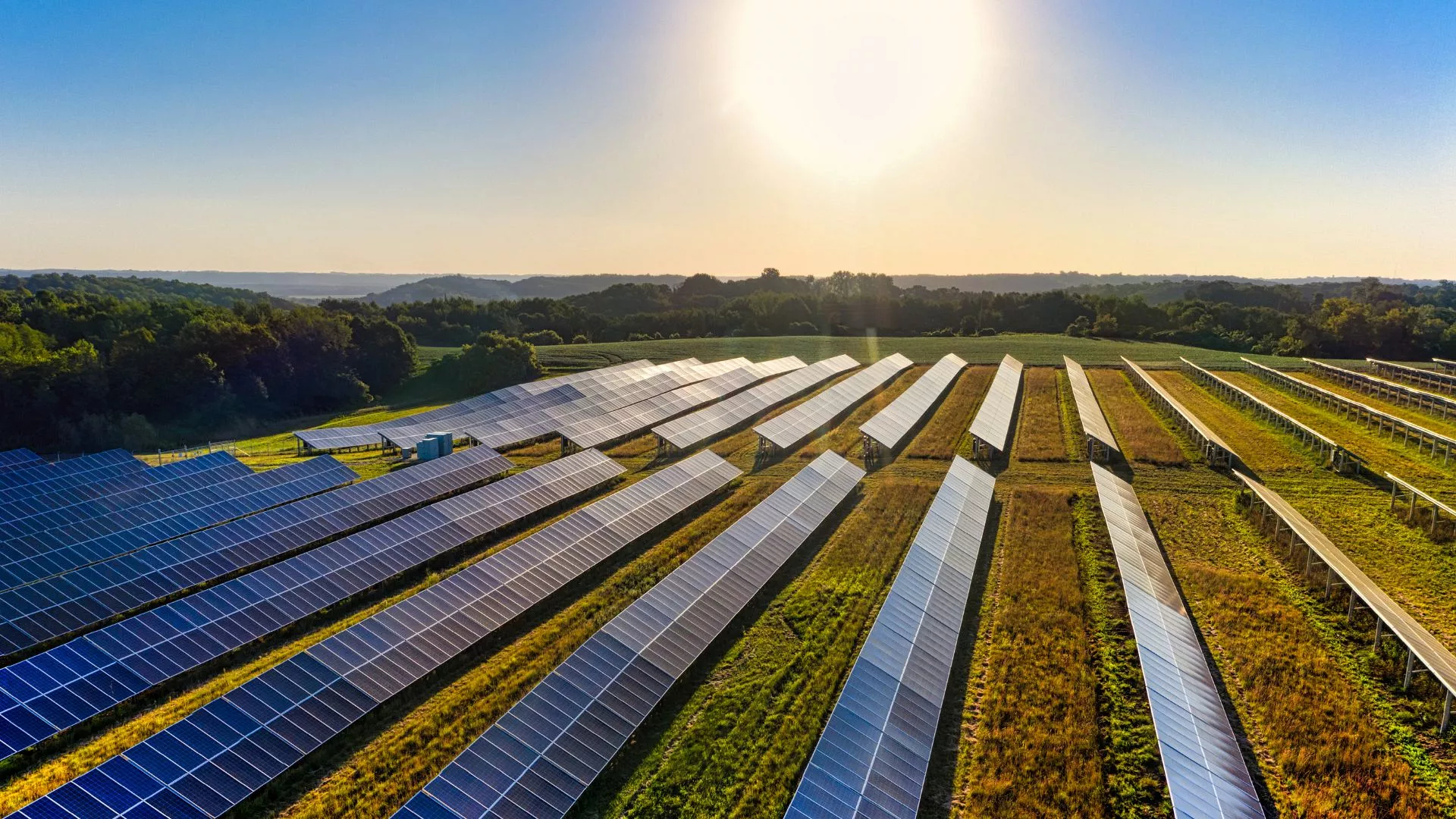
- 10 Apr 2024
Why is it in the News?
Recent government orders on attempts to increase local sourcing of solar modules to support India’s renewables manufacturing ecosystem have been widely reported in the media as ‘import restrictions’.
What is the Approved List of Models and Manufacturers (ALMM) List?
- The Approved List of Models and Manufacturers of Solar Photovoltaic Modules (ALMM) comprises government-approved manufacturers eligible for use in government projects, government-assisted projects, and schemes.
- ALMM aims to boost the domestic solar industry and reduce dependence on imports, particularly from China.
ALMM's Suspension and Reinstatement:
- The ALMM was kept in abeyance for two years to address concerns raised by renewable energy producers with pre-existing government contracts.
- During this period, India's domestic solar industry struggled to compete with cheap Chinese imports.
- To support local manufacturers, the government launched initiatives like the Production Linked Incentive (PLI) scheme under the Atmanirbhar Bharat ('Self-Reliant India') Programme.
- With the PLI scheme enhancing the competitiveness of Indian manufacturers, the ALMM was reinstated in March 2024.
- The government believes that domestic companies can now meet India's solar equipment demand, making the ALMM an essential tool for promoting import substitution and self-reliance in the renewable energy sector.
Solar PV Imports:
- India heavily relies on solar cell and module imports, with China and Vietnam being the primary suppliers.
- Government data reveals that India imported approximately $11.17 billion worth of solar cells and modules over the past five years.
- As of 2023-24, China accounted for 53% of solar cell imports and 63% of solar PV modules.
China's Competitive Edge:
- Several factors contribute to China's dominance in solar PV exports:
- Cost-effective manufacturing due to lower power costs
- Government policies prioritizing the solar PV sector
- Economies of scale and continuous innovation driven by growing domestic demand
- These advantages have made China the most cost-competitive location for producing solar PV components, making it challenging for other countries to match their production capabilities.
What is the Scope of Solar Energy in India?
- India's solar sector holds immense potential, driven by the government's target of achieving 500 GW of installed non-fossil fuel capacity by 2030.
- Moreover, the country's rapid growth in electricity demand, fueled by economic activities and climate adaptation measures, positions solar power as a critical resource.
- Solar energy accounted for one-third of renewable energy generation from April 2023 to February 2024, showcasing its significance in India's energy mix.
- Despite an estimated solar power potential of 748.99 GW, the country has yet to fully exploit this resource.
- To harness this potential, the government is implementing various schemes and programs, paving the way for a sustainable and prosperous solar future.
Oceanic Niño Index (ONI)
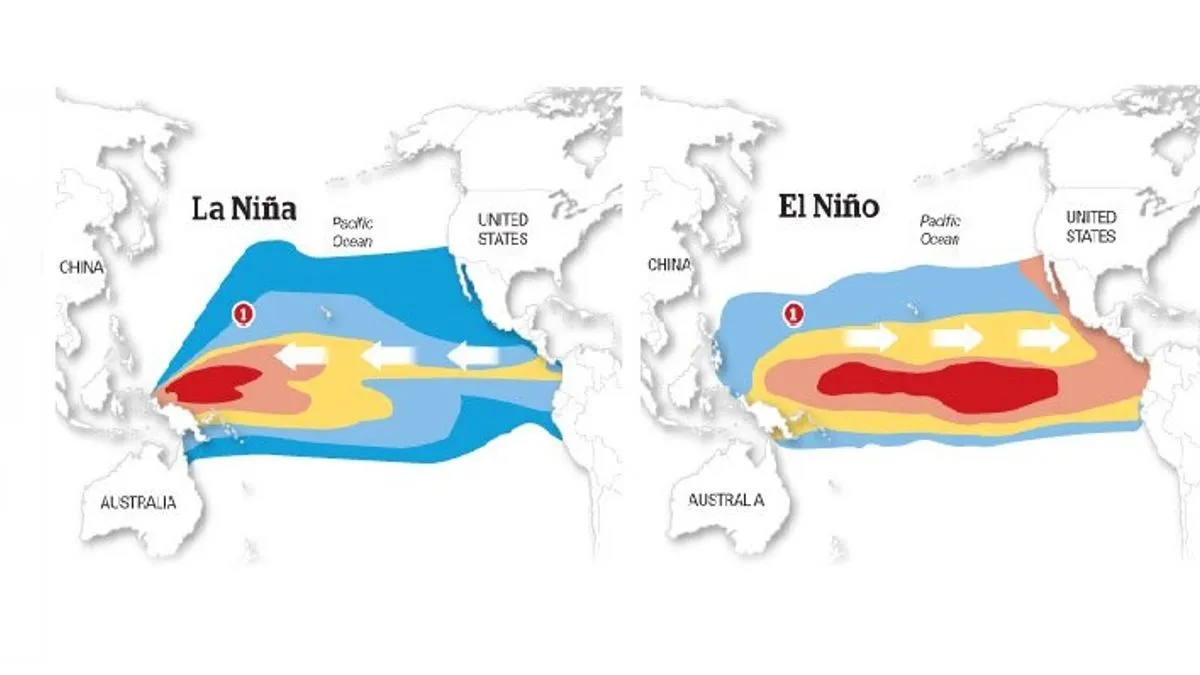
- 08 Apr 2024
Why is it in the News?
The US National Oceanic and Atmospheric Administration (NOAA) has recently forecasted an 83% likelihood that the Oceanic Niño Index (ONI) will move into a neutral range between April and June 2024.
What is the Oceanic Niño Index?
- The Oceanic Niño Index (ONI) is the National Oceanic and Atmospheric Administration's (NOAA) primary indicator for monitoring El Niño and La Niña, which are opposite phases of the climate pattern called the El Niño-Southern Oscillation, or “ENSO” for short.
- NOAA is a US governmental agency responsible for monitoring and researching the Earth's oceans, atmosphere, and climate, and providing weather forecasts and environmental data.
- The ONI is the difference between a three-month running average of the sea surface temperature averaged over an area of the ocean from 120 West to 170 West longitude along the equator and the long-term average for the same three months.
- NOAA considers El Niño conditions to be present when the Oceanic Niño Index is +0.5 or higher, indicating the east-central tropical Pacific is significantly warmer than usual.
- La Niña conditions exist when the Oceanic Niño Index is -0.5 or lower, indicating the region is cooler than usual.
What is El Niño and La Niña?
- El Niño and La Niña are two natural climate phenomena that occur in the Pacific Ocean, characterized by fluctuations in ocean surface temperatures.
- They are part of the El Niño-Southern Oscillation (ENSO) cycle, which impacts global weather patterns.
- El Niño refers to the warming of ocean surface temperatures in the eastern tropical Pacific.
- This warming causes changes in atmospheric pressure and wind patterns, which can lead to drought conditions in parts of South America and heavy rainfall in other regions, such as the southern United States.
- La Niña is the opposite phase of the ENSO cycle, characterized by cooler-than-average ocean surface temperatures in the eastern tropical Pacific.
- This results in the strengthening of normal trade winds, causing increased rainfall in some regions, such as Indonesia and northern Australia, and drier conditions in other areas, including the southwestern United States.
- El Niño refers to the warming of ocean surface temperatures in the eastern tropical Pacific.
Effects of El Niño and La Niña on India:
- Both El Niño and La Niña have significant impacts on India's climate, particularly during the monsoon season.
- El Niño events often lead to weaker monsoon winds and reduced rainfall in India, causing droughts and impacting agricultural production.
- On the other hand, La Niña events typically result in stronger monsoon winds and higher rainfall, leading to better agricultural yields.
- However, excessive rainfall can also cause floods and landslides in some regions.
- Monitoring and predicting the occurrence of El Niño and La Niña events is crucial for India's weather forecasting and agricultural planning.
- Accurate predictions enable authorities to take necessary measures to mitigate potential adverse effects on agriculture and infrastructure.
SUVIDHA Portal

- 08 Apr 2024
Why is it in the News?
The Election Commission said that over 73 thousand applications had been received on the Suvidha Portal in just 20 days since the announcement of General Elections 2024.
About SUVIDHA Portal:
- The Suvidha portal is a technological solution developed by the Election Commission of India (ECI) to ensure a level playing field upholding the democratic principles of free, fair, and transparent elections.
- Suvidha's robust track record showcases its ability to streamline requests for permissions and facilities during election campaigns, catering to diverse needs such as rallies, canvassing, and temporary party offices.
- The Suvidha portal offers both online and offline submission options, ensuring inclusivity and equal opportunity for all stakeholders.
- Permission requests can be processed efficiently through a robust IT platform managed by nodal officers from various state departments.
- The portal's user-friendly design allows political parties and candidates to submit requests from anywhere, at any time.
- To enhance transparency and convenience, Suvidha also provides a companion app for real-time tracking of application statuses.
- Available on both iOS and Android platforms, the app ensures a seamless user experience.
- Moreover, the Suvidha portal promotes accountability by offering features such as real-time tracking, status updates, timestamped submissions, and SMS communication.
- Data collected on the Suvidha platform serves as a valuable resource for scrutinizing election expenditures, thereby promoting greater integrity in the electoral process.
- With Suvidha, the Election Commission of India demonstrates its commitment to facilitating a fair, efficient, and transparent electoral environment, granting equal access to all political parties and candidates seeking permissions and clearances during election campaigns.
Hydroponic Farming
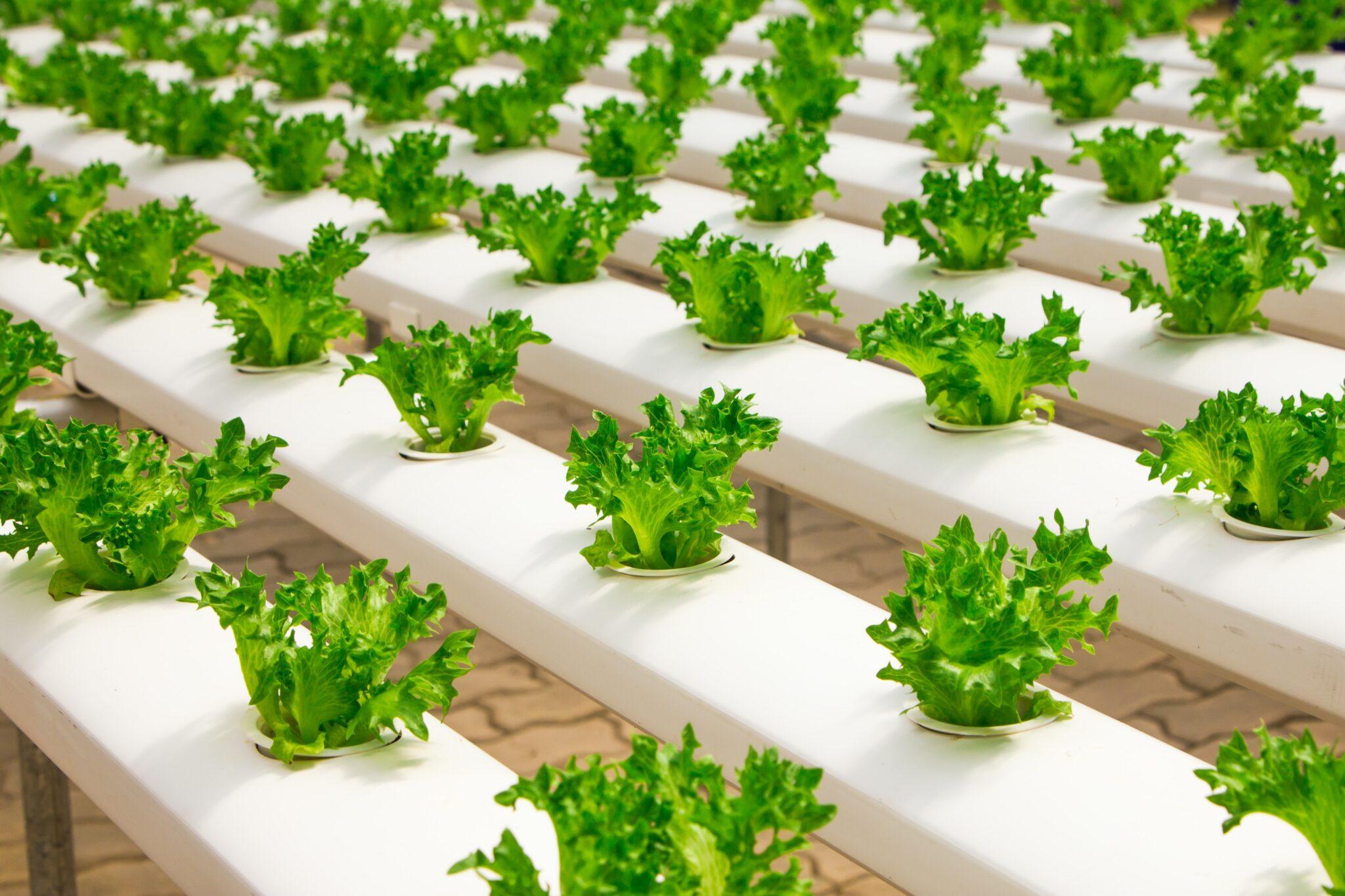
- 06 Apr 2024
Why is it in the News?
In the wake of evolving consumer preferences, India is at the forefront of an agricultural transformation, pivoting towards sustainable farming with an emphasis on health.
What is Hydroponics?
- Hydroponics is a method of growing plants without soil, utilizing nutrient-rich water as the primary source of essential minerals and elements.
- The technique involves the circulation of nutrient-enriched water through a network of pipes or channels, directly supplying the roots of plants with the necessary nourishment for their growth and development.
Key Features and Benefits:
- Soilless Cultivation: Hydroponics eliminates the need for soil by providing an alternative substrate or a soil-like medium, such as rock wool, perlite, or vermiculite, to support the plants' roots.
- Nutrient Control: This technique enables precise control over the nutrient composition, concentration, and pH levels in the water, ensuring optimal nutrient availability for plants.
- Water Efficiency: Hydroponics recirculates and reuses water, significantly reducing water consumption compared to traditional soil-based farming.
- Space Optimization: Due to the compact nature of hydroponic systems, they can be used in urban areas, greenhouses, and indoor facilities, maximizing yield per unit area.
- Year-round Cultivation: With controlled environmental conditions, hydroponics allows for continuous cultivation, regardless of seasonal changes or weather fluctuations.
- Hydroponics provides a sustainable, efficient, and adaptable approach to agriculture, with potential benefits in resource conservation, food security, and sustainable urban food production.
Hydroponics in India:
- According to a report by Datamintelligence, India’s hydroponic market is poised for a remarkable growth trajectory, with a projected Compound Annual Growth Rate (CAGR) of 13.53% by 2027, outpacing the global industry’s estimated growth of 6.8%.
- This surge underscores the vast potential of hydroponics in meeting the rising demand for sustainable food produce, particularly in metros and tier 1 cities where health-conscious consumers are willing to pay a premium for fresh, safe, and sustainably grown products.
- This transformative shift is not just a response to changing consumer preferences for fresh produce but also an adaptation to the geographical and environmental challenges that face traditional farming methods.
Suitable Regions for Hydroponic Farming:
- Hydroponic farming presents a viable solution in regions where traditional farming faces significant barriers:
- Areas with Limited Water Supply: Hydroponics drastically reduces water usage, making it ideal for drought-prone areas.
- Rocky Regions: In places where the terrain is unsuitable for soil-based agriculture, hydroponics offers a practical alternative.
- Low Soil Fertility Areas: Hydroponics bypasses the need for fertile soil, allowing cultivation in regions with poor soil quality.
- Demand-Driven Areas: Regions with a high demand for fresh products are perfect for hydroponic farms, catering to health-conscious consumers in urban and semi-urban locales
The Edge with Hydroponic Farming in India:
- Hydroponic farming’s ascendancy in India is attributed to several compelling benefits, underpinned by technological advancements that lower operational costs and facilitate scalability:
- Versatility in Location: It enables agriculture in environments traditionally deemed unsuitable, such as deserts or cold climates.
- Controlled Conditions: Farmers have precise control over nutrients, pH, and the growing environment, optimizing plant health and yield.
- Resource Efficiency: The recycling of water and nutrients significantly cuts down on input costs and environmental impact.
- Enhanced Growth Rates: Increased oxygen availability accelerates plant growth, leading to quicker harvest cycles.
- Pest and Disease Reduction: By eliminating soil, hydroponics reduces the risk of soil-borne diseases and pests.
- Higher Yields: The efficiency and controlled environment of hydroponic systems result in substantially higher crop yields.
- Labour and Maintenance Savings: The absence of weeding and traditional cultivation reduces labour requirements and costs.
- Improved Working Conditions: Elevating crops to a more accessible height improves ergonomics for farm workers, further reducing labour costs.
- No Need for Crop Rotation: Hydroponics eliminates the necessity for crop rotation, simplifying farm management.
- Reduced Transplant Shock: Plants grown hydroponically experience less stress when transplanted, enhancing survival rates.
India Abstains from UNHRC Resolution on Gaza Ceasefire
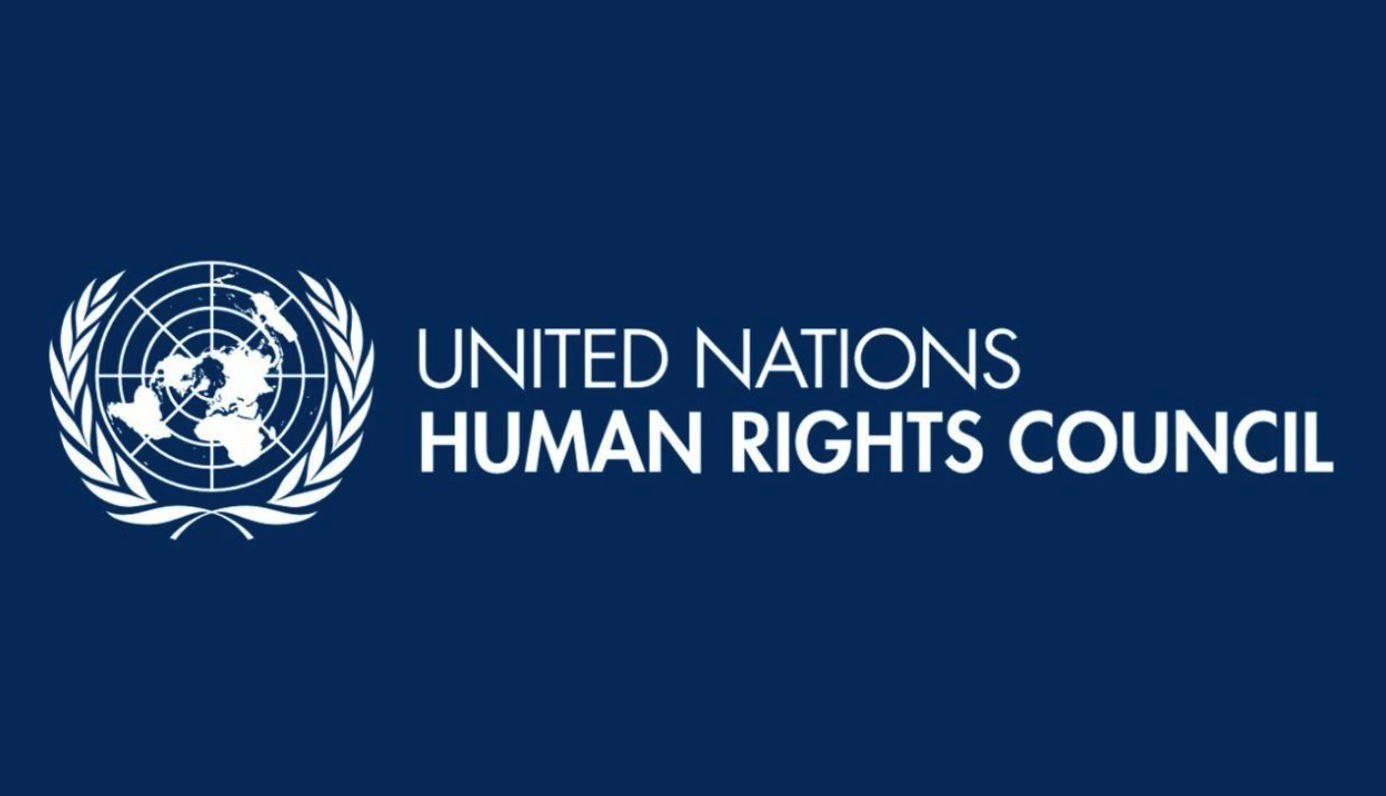
- 06 Apr 2024
Why is it in the News?
India recently abstained on a resolution at the Human Rights Council that called on Israel for an immediate ceasefire in Gaza.
India's Voting Pattern on Israel-Palestine Issues at the UNHRC:
- India's stance on the Israel-Palestine conflict has been reflected in its voting behavior at the United Nations Human Rights Council (UNHRC).
- While India has voted in favor of resolutions criticizing Israel for human rights violations, occupation of the Syrian Golan, and affirming Palestinian self-determination, it has also abstained from certain resolutions.
- In a significant development, India abstained from a resolution calling for an immediate ceasefire in Gaza and an arms embargo on Israel.
- This decision followed instances of violence, including the killing of aid workers and airstrikes.
- India's abstention is believed to be in line with its previous votes on resolutions involving "accountability."
- India's approach indicates its belief that both parties should be held accountable for their actions.
- As a result, it refrains from supporting resolutions that single out one side for condemnation.
- By taking a balanced stance, India aims to promote peace and stability in the region while advocating for the rights of all parties involved.
About the United Nations Human Rights Council (UNHRC):
- The United Nations Human Rights Council (UNHRC) is an inter-governmental body established by the United Nations General Assembly (UNGA) in 2006.
- Headquartered in Geneva, Switzerland, the council serves as a key platform for addressing human rights issues globally.
- The High Commissioner for Human Rights serves as the principal human rights official within the UN system.
- The council convenes three times annually to address human rights violations worldwide.
Membership:
- Comprising 47 member states, the council is responsible for promoting and safeguarding human rights across the globe.
- Member states are elected individually via secret ballot by a majority vote of the General Assembly.
- The election of members occurs within geographical groups to ensure equitable representation.
Tenure:
- Council members serve for a term of three years and are not eligible for immediate re-election after two consecutive terms.
The UNHRC's primary functions include:
- Promoting universal respect for human rights and fundamental freedoms.
- Addressing violations of human rights, including gross and systematic violations.
- Developing international human rights law and making recommendations to the UN General Assembly.
- Conducting investigations into alleged human rights abuses through special rapporteurs and working groups.
- Reviewing the human rights records of all UN member states through the Universal Periodic Review process.
Agni-Prime Ballistic Missile
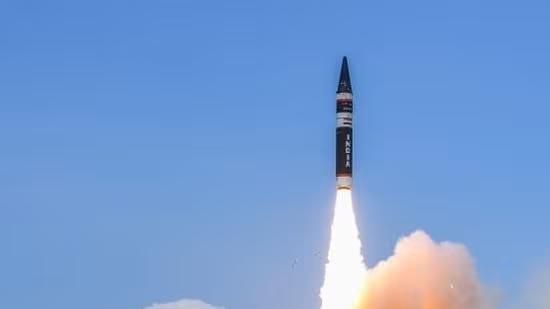
- 05 Apr 2024
Why is it in the News?
India has successfully flight-tested the new generation ballistic missile Agni-Prime from the APJ Abdul Kalam Island off the coast of Odisha.
About Agni-Prime Missile:
- Agni-P or Agni-Prime is a new generation nuclear-capable medium-range ballistic missile (MRBM) developed by the DRDO that incorporates technological advances from Agni-IV and Agni-V and is considered a successor for Agni-I and Agni-II missiles in the operational service of the SFC.
- Agni-Prime, with a strike range of 1,000 to 2,000 km, has significant upgrades, which include composite motor casing, maneuverable reentry vehicle (MaRV), improved propellants, and navigation and guidance systems.
- It is a two-stage, surface-to-surface, road-mobile, and solid-fueled missile that is transported by a truck and launched via a canister.
- It is a ballistic missile with a dual redundant navigation and guidance system.
Features:
- Although Agni-Prime looks similar to Agni-III, the weight is reduced by half.
- Agni-P will replace older generation missiles such as Prithvi-II (350 km), Agni-II (2,000 km), Agni-III (3,000 km), and Agni-4 (4,000 km) ballistic missiles.
- Agni-Prime incorporates upgrades such as propulsion systems, composite rocket motor casings, and advanced navigation and guidance systems.
- Along with Agni-V, Agni-P will provide India with stronger deterrence against countries such as China and Pakistan.
- While Agni-V brings all of China within its strike range, Agni-P seems to have been developed to counter Pakistan's forces.
- Agni-P is developed to achieve maximum maneuverability against missile defense systems and higher accuracy for precision strikes.
What is a Ballistic Missile and why is it named so?
- A Ballistic missile follows a ballistic flight path - which comprises three phases of flight.
- In the first phase or the boost phase, the solid-fuel rocket engine propels the missile upwards and it has to rapidly gain velocity and altitude, by knifing through the densest parts of the earth's atmosphere.
- The second and unpowered phase of flight happens in the upper reaches of the earth's atmosphere or in space, where the missile travels along its pre-determined path, but without the power of its engines.
- It is known as the coast phase or mid-course phase and during this time, it travels along a horizontal path.
- During the coasting, the missile is either in space or the upper atmosphere, where it faces minimal resistance or drag.
- In the third and final phase or the terminal phase, the missile descends and gets back into the earth's atmosphere and flies towards its target, while being guided by its on-board systems.
Ahobilam Temple
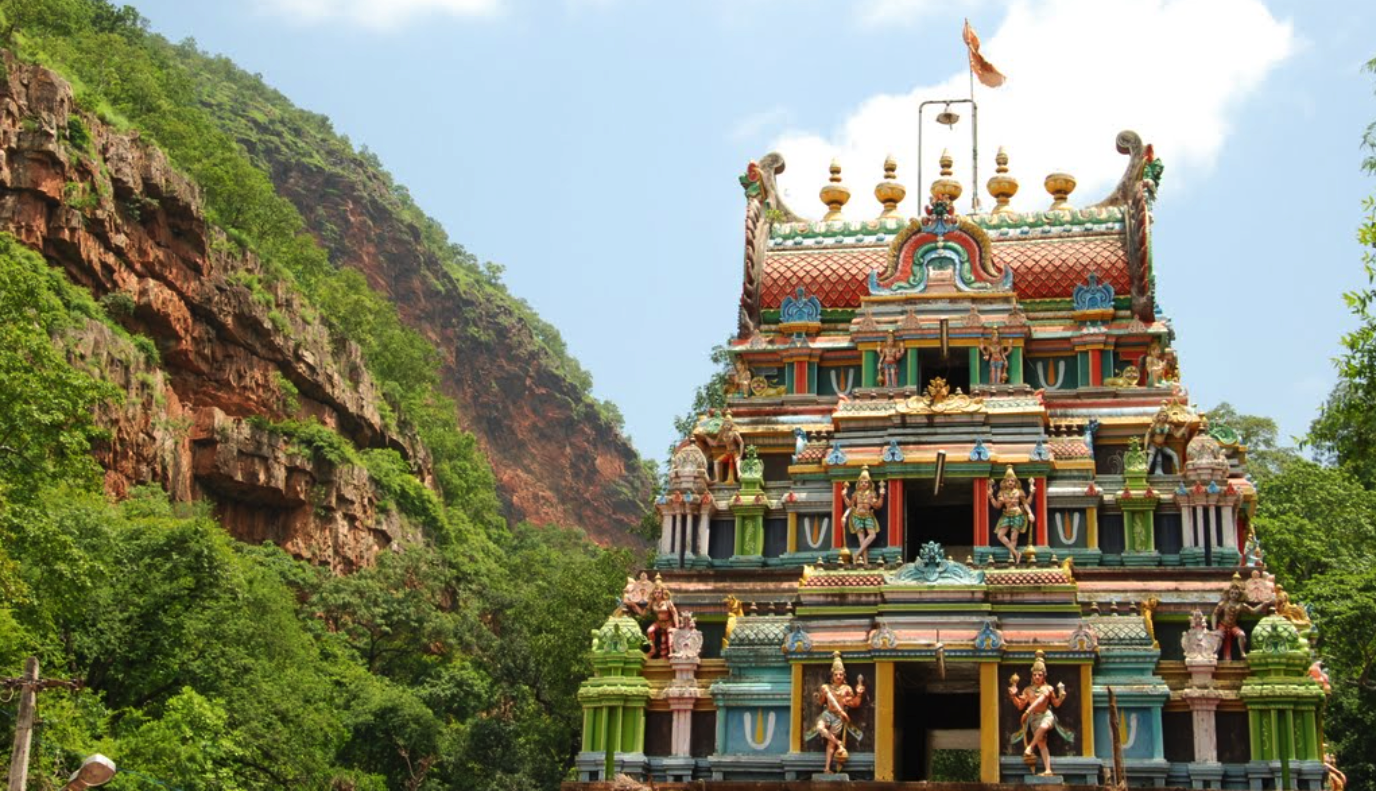
- 04 Apr 2024
Why is it in the News?
The Forest Department and Sri Lakshmi Narasimha Swamy Devasthanam (SLNSD) at Ahobilam have imposed certain restrictions on visitors arriving at the shrine, which is composed of nine different temples, situated within the Nallamala forest.
About Ahobilam Temple:
- The Ahobilam is a famous temple situated on the Nallamalai ranges in the state of Andhra Pradesh.
- The Nallamalai ranges south of river Krishna, down to Tirupati, and are called `Sesha Parvatha`.
- Sesha is the name of the king of serpents.
- The hood of the sesha is at Tirupati, the tail is at Srisailam, and the middle is situated at Ahobilam.
- Nallamalais at the tail are called Sringiri
- In the middle are called Vedagiri and
- Garudagiri referred to as the hood
- The shrine of the Ahobilam temple is situated on the top of the first range and is referred to as Upper Ahobilam and down below is called Lower Ahobilam.
- A huge temple surrounded by several buildings can be seen at the Upper Ahobilam.
- The main shrine or the "sacro sanctum" at Upper Ahobilam was carved out of a big egg-like rock with mandapams.
- There is a tank here, which supplies water to the residents of the Upper Ahobliam temple.
- There is a Lower Ahobilam in the below with a big temple and enclosures, It was built according to the South Indian style (Dravidian architecture).
Significance:
- Ahobilam is traditionally regarded as the place where Vishnu in the form of Narasimha killed the Rakshasa Hiranyakashipu to save his devotee Prahlada.
- The legend says that Narasimha emerged from a rock pillar to slay the Rakshasa.
- The moment is represented in several murtis in the various temples.
- Also, Garuda prayed for a vision of Narasimha in the form of Avathara, to fulfill his wish, and settled in nine forms across the hills in Ahobilam.
About Nallamala Forest:
- Nallamala Forest is among South India's largest expanses of untouched woodland, besides the Western Ghats.
Location:
- Situated across five districts in Andhra Pradesh and Telangana, it sprawls across the Nallamala Hills, a segment of the Eastern Ghats, south of the Krishna River.
- Part of the forest falls within the Nagarjunsagar-Srisailam Tiger Reserve, the nation's largest tiger reserve, boasting a significant tiger population.
Climate:
- Experiencing warm to hot conditions year-round, with scorching summers and mostly cool, dry winters.
- The majority of rainfall occurs during the southwest monsoon.
Vegetation:
- Tropical dry deciduous.
Flora:
- Nallamala Forest is rich in endemic species like Andrographis nallamalayana, Eriolaena lushingtonii, Crotalaria madurensis var, Dicliptera beddomei, and premna hamitonii.
Fauna:
- Home to over 700 animal species, including tigers, leopards, black bucks, wild hogs, peacocks, pangolins, Indian Pythons, King Cobras, and numerous rare bird species.
The Marine Products Export Development Authority (MPEDA)
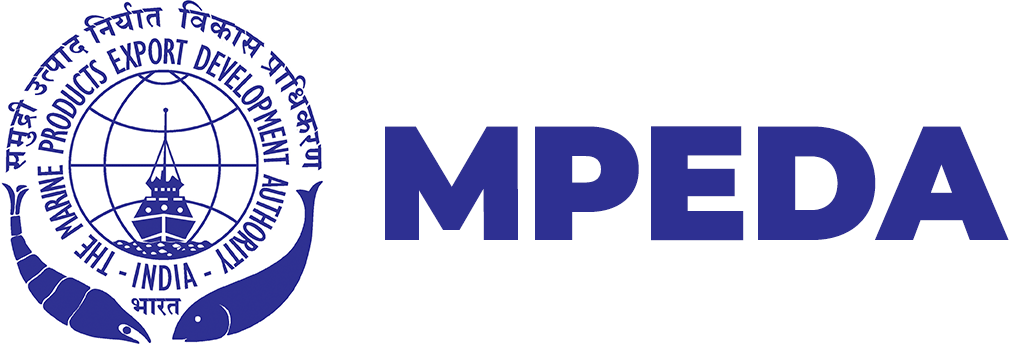
- 04 Apr 2024
Why is it in the News?
Officials recently emphasized that India's shrimp export value chain is certified by the Marine Products Export Development Authority (MPEDA), ensuring that abusive conditions are not tolerated at shrimp farms.
About the Marine Products Export Development Authority (MPEDA):
- The Marine Products Export Development Authority (MPEDA) was set up by an act of Parliament in 1972.
- The erstwhile Marine Products Export Promotion Council established by the Government of India in September 1961 was converged into MPEDA on 24th August 1972.
- MPEDA is given the mandate to promote the marine products industry with special reference to exports from the country.
- It is the nodal agency for the holistic development of the seafood industry in India to realize its full export potential as a nodal agency.
- Based on the recommendations of MPEDA, the Government of India notified new standards for fishing vessels, storage premises, processing plants, and conveyances.
- MPEDA’s focus is mainly on Market Promotion, Capture Fisheries, Culture Fisheries, Processing Infrastructure & Value addition, Quality Control, Research and Development.
- It is envisaged that this organization would take all actions to develop and augment the resources required for promoting the exports of “all varieties of fishery products known commercially as shrimp, prawn, lobster, crab, fish, shellfish, other aquatic animals or plants or part thereof and any other products which the authority may, by notification in the Gazette of India, declare to be marine products for (the) Act”.
- The Act empowers MPEDA to regulate exports of marine products and take all measures required for ensuring sustained, quality seafood exports from the country.
- MPEDA is given the authority to prescribe for itself any matters that the future might require for protecting and augmenting the seafood exports from the country.
- It is also empowered to inspect marine products, their raw materials, fixing standards, specifications, and training as well as take all necessary steps for marketing the seafood overseas.
Major Functions of MPEDA:
-
- Infrastructure registration for seafood export trade.
- Trade information collection and dissemination.
- Promotion of Indian marine products overseas.
- Assistance for infrastructure development and modernized processing.
- Aquaculture promotion for export production augmentation.
- Deep-sea fishing project promotion and equipment upgrade.
- Market promotion and publicity activities.
- Inspection of marine products and raw materials, setting standards.
- Training for fishermen, fish processing workers, and aquaculture farmers.
- Research and development through RGCA.
- Extension activities through NETFISH and NaCSA.
- Matters related to protecting and increasing seafood exports.
- Headquarters of MPEDA is located in Kochi, Kerala.
- Nodal Ministry: Ministry of Commerce and Industry.
- It has Trade Promotion offices in New Delhi, Tokyo, and New York.
Wadge Bank
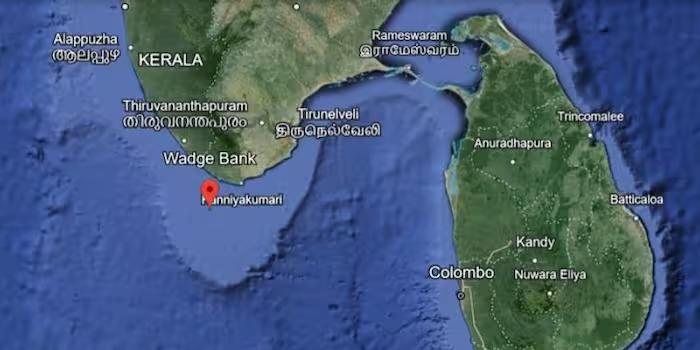
- 03 Apr 2024
Why is it in the News?
While India 'gave away' rights to Katchatheevu, in a subsequent pact, it secured sovereign rights in Wadge Bank near Kanyakumari.
What is Wadge Bank?
- Wadge Bank is a 10,000 square kilometer submarine plateau, of the sea south of Kanyakumari that is rich in biodiversity and considered India’s richest fishery resource.
- Wadge Bank, located near Cape Comorin, is home to more than 60 species of ornamental fish and other oceanic animals.
- It is a productive coastal area where three seas meet and tides create a rich fishing ground from May to October.
- Moreover, it is an invaluable treasure that indigenous people and communities depend on for food and resources, and is important to their culture.
How did India get control of the Wadge Bank?
- Wadge Bank came to India as part of the second of the two accords signed with Sri Lanka in the 1970s.
- Following the 1974 agreement under which Prime Minister Indira Gandhi ‘gave away’ Katchatheevu island to Sri Lanka, New Delhi, and Colombo signed another pact in 1976 under which the former bought Wadge Bank.
- On March 23, 1976, India and Sri Lanka signed the agreement on the maritime boundary in the Gulf of Mannar and the Bay of Bengal as part of which it was agreed that the Wadge Bank “lies within the exclusive economic zone of India, and India shall have sovereign rights over the area and its resources”.
- In the general description of Wadge Bank annexed with the treaty shared with the United Nations, it is described as “outside the territorial waters of India”.
- The Wadge Bank near Kanyakumari is rich in biodiversity and considered India’s richest fishery resource.
- As per the 1976 pact, Sri Lankan fishermen can’t engage in activities here.
- ??But at the request of Sri Lanka and as a gesture of goodwill, India agreed that Lankan fishing vessels licensed by the Government of India could fish in Wadge Bank for three years from its establishment as an exclusive economic zone of India with the stipulation that only six such vessels can fish and their catch cannot exceed 2,000 tonnes in a year.
- And, again at the request of the Sri Lankan government, India agreed to provide Colombo with 2,000 tonnes of fish of the quality, species, and at the price mutually agreed by the two sides for five years after the Lankans stopped fishing at the Wadge Bank.
BIMSTEC Charter
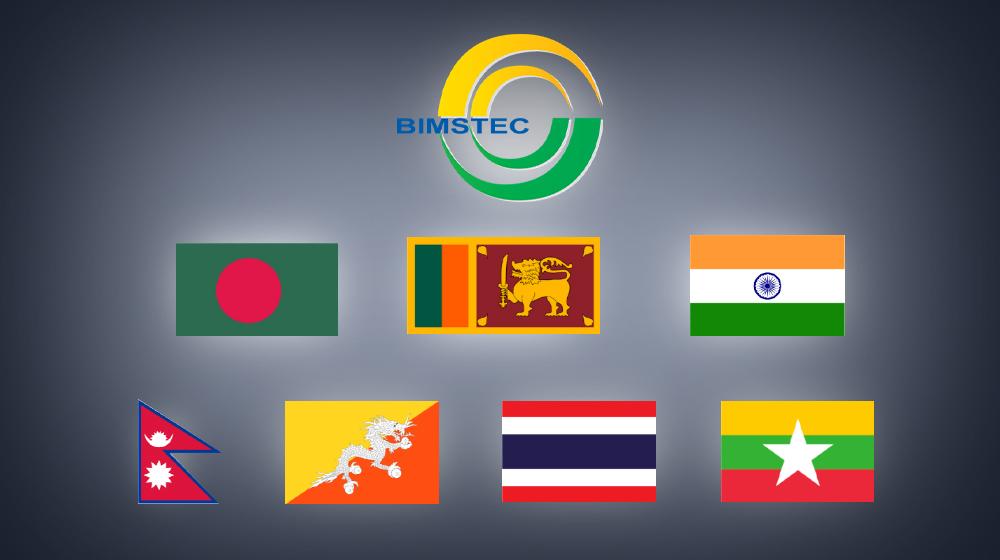
- 03 Apr 2024
Why is it in the News?
Recently, a significant majority in Nepal's Lower House backed the proposal to endorse the BIMSTEC Charter.
About the BIMSTEC Charter:
- The BIMSTEC Charter, officially signed and adopted during the Fifth BIMSTEC Summit in Colombo, Sri Lanka in 2022, serves as a cornerstone legal and institutional framework for the Bay of Bengal Initiative for Multi-Sectoral Technical and Economic Cooperation (BIMSTEC).
- This charter aims to establish a structured environment conducive to rapid economic development by delineating specific cooperation projects within the agreed areas of collaboration, along with potential expansions into additional areas as mutually agreed upon by Member States.
- Furthermore, the charter reaffirms the enduring commitment to the foundational principles and objectives of BIMSTEC, as articulated in the Bangkok Declaration of 1997.
The Importance of the BIMSTEC Charter:
- By officially adopting the BIMSTEC Charter, the organization transforms into a structured institution comprising member states situated along the Bay of Bengal, thereby formalizing their cooperation and dependence on this vital maritime region.
- The Charter grants BIMSTEC the authority to establish external relations with non-member states, developmental partners, as well as regional, UN, and international organizations, facilitating broader collaboration and engagement.
- Moreover, it underscores the imperative for a fair, just, equitable, and transparent global order while reiterating the commitment to multilateralism, with the United Nations at its core, and advocating for a rule-based international trading system.
About the Bay of Bengal Initiative for Multi-Sectoral Technical and Economic Cooperation (BIMSTEC):
- The Bay of Bengal Initiative for Multi-Sectoral Technical and Economic Cooperation (BIMSTEC) is a regional organization comprising seven Member States lying in the littoral and adjacent areas of the Bay of Bengal constituting a contiguous regional unity.
- This sub-regional organization came into being on 6 June 1997 through the Bangkok Declaration.
- It constitutes seven Member States:
- Five derive from South Asia, including Bangladesh, Bhutan, India, Nepal, and Sri Lanka, and
- Two from Southeast Asia, including Myanmar and Thailand.
- Initially, the economic bloc was formed with four Member States with the acronym ‘BIST-EC’ (Bangladesh, India, Sri Lanka, and Thailand Economic Cooperation).
- Following the inclusion of Myanmar on 22 December 1997 during a special Ministerial Meeting in Bangkok, the Group was renamed ‘BIMST-EC’ (Bangladesh, India, Myanmar, Sri Lanka and Thailand Economic Cooperation).
- With the admission of Nepal and Bhutan at the 6th Ministerial Meeting (February 2004, Thailand), the name of the grouping was changed to ‘Bay of Bengal Initiative for Multi-Sectoral Technical and Economic Cooperation’ (BIMSTEC).
Havana Syndrome
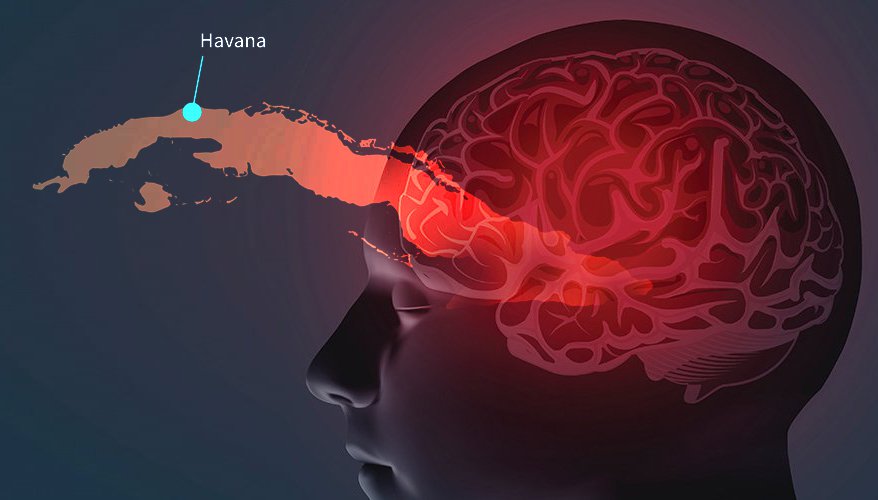
- 02 Apr 2024
Why is it in the News?
The mysterious so-called Havana Syndrome symptoms experienced by U.S. diplomats in recent years have been linked to a Russian intelligence unit, according to a joint media investigation released on April 1.
What is Havana Syndrome?
- Havana Syndrome is a term used to describe a set of mental health symptoms experienced by US intelligence and embassy officials in various countries.
- The symptoms include hearing sounds without any external noise, nausea, vertigo, headaches, memory loss, and balance issues.
- The syndrome first came to light in 2016 when US officials stationed at the country's embassy in Havana, Cuba, began reporting these symptoms.
- The exact cause of the syndrome remains unknown, but it has been linked to high-frequency microwave transmissions.
- The syndrome was named after the city where it was first reported, Havana, and has since been reported by US government officials and military personnel serving at various stations across the world.
- The symptoms of Havana Syndrome are diverse and range from pain and ringing in the ears to cognitive dysfunction.
- Some individuals have also reported hearing loss, memory loss, and nausea.
- The exact cause of these symptoms remains unknown, with theories ranging from sonic weapons to mass psychogenic illness.
- Despite ongoing investigations, there is currently no known cure for Havana Syndrome.
- Research continues into the potential causes and treatments for this perplexing condition.
Affected Regions:
- As per reports from US media outlets, over the past few years, officials have documented more than 130 instances worldwide, including in Moscow, Russia, Poland, Georgia, Taiwan, Colombia, Kyrgyzstan, Uzbekistan, and Austria, among others, with similar accusations emerging in early 2018 from US diplomats stationed in China.
- Status in India: The first such incident was reported in 2021 when a US intelligence officer accompanying CIA director William Burns to New Delhi exhibited symptoms of Havana Syndrome.
Recent Investigation Findings and Russia's Response:
- A year-long investigation revealed evidence suggesting that unexplained anomalous health incidents, commonly known as Havana Syndrome, may be linked to the use of directed energy weapons wielded by members of Russia's GRU Unit 29155, responsible for foreign operations and implicated in various international incidents, including the 2018 attempted poisoning of defector Sergei Skripal in Britain.
- Moscow has dismissed the allegations as "groundless," asserting the absence of convincing evidence, deeming the accusations baseless and unfounded.
What are Microwave Weapons?
- Microwave weapons, a type of directed energy weapon, utilize high-frequency electromagnetic radiation to generate heat in the water within a target's skin, resulting in pain and discomfort.
- Several nations are believed to have developed such weapons for use against both humans and electronic systems.
- China unveiled its "microwave weapon," the Poly WB-1, at an air show in 2014, while the United States has also designed a prototype called the "Active Denial System."
- The existence of these weapons has raised concerns regarding their potential misuse, and further research is necessary to understand their long-term effects and implications on human health and security.
Voter Verifiable Paper Audit Trail (VVPAT)
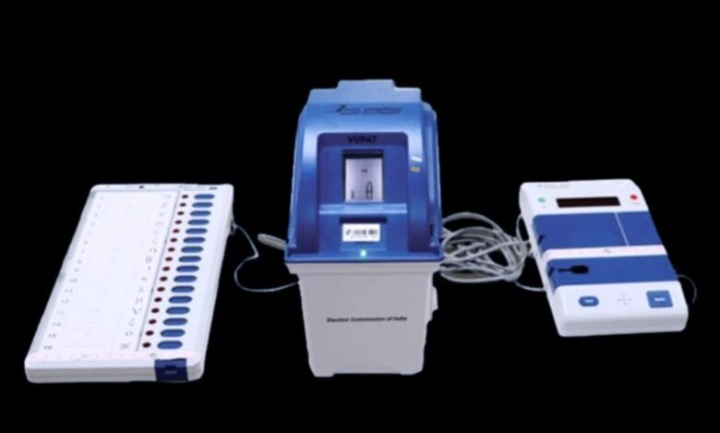
- 02 Apr 2024
Why is it in the News?
The Congress has hailed as an “important first step” the Supreme Court’s notice to the Election Commission and the Centre on a plea seeking a complete count of VVPAT slips and said the matter should be decided before the Lok Sabha polls commence.
What is the Voter Verifiable Paper Audit Trail (VVPAT)?
- The Voter Verifiable Paper Audit Trail, or VVPAT system, was first introduced in 2014 for the first time during the 2014 Lok Sabha Elections.
- The ECI conducted pilot tests of VVPAT systems in a few constituencies in 2011, and after successful trials, VVPAT was gradually deployed across all polling stations in subsequent elections.
- It is connected to Electronic Voting Machines (EVM) and enables voters to confirm that their votes were cast as intended.
- The concept of VVPAT was to enhance the credibility and transparency of EVMs.
What are VVPAT Slips?
- VVPAT slips are an integral part of the EVMs used in elections.
- It provides a physical paper trail for voters to verify that their vote has been correctly recorded by the EVM.
- It ensures transparency and accountability in the electoral process by allowing voters to verify their vote before casting it finally.
- The VVPAT produces a paper slip that permits the voter to confirm the accuracy of their vote on the EVM.
- This slip displays the name and symbol of the party chosen by the voter.
- Additionally, the machine features a transparent window through which the voter can observe the printed slip.
- Subsequently, the slip is securely deposited into a sealed compartment within the machine.
- However, in the event of a dispute, this sealed box can be opened for further examination.
Controversies Surrounding VVPAT:
- Despite its intended purpose of enhancing transparency, VVPAT has been subject to several controversies over the years.
- Some critics have raised concerns about the reliability of VVPAT systems, citing instances of malfunctioning printers, paper jams, and discrepancies between electronic and paper records.
- The Opposition parties within the INDIA bloc have been advocating for the full counting of VVPATs, to bolster public trust in the EVMs, which itself has been subjected to intense scrutiny recently.
- Their concern has mostly stemmed from allegations of delay in the printing and displaying of VVPAT slips for every vote, which they claim can significantly increase the time required for vote counting.
Supreme Court’s intervention in VVPATs:
- In April 2019, the SC asked the poll panel to increase the number of EVMs that undergo VVPAT physical verification from one to five per assembly segment in a parliamentary constituency.
- In the month of May the same year, the Supreme Court dismissed a writ petition seeking 100 percent counting of VVPAT in the 2019 Lok Sabha elections.
- Earlier in the same month, the Supreme Court had also dismissed the review petition filed by opposition parties to increase verification of VVPAT-EVM to 50 percent.
Katchatheevu Island
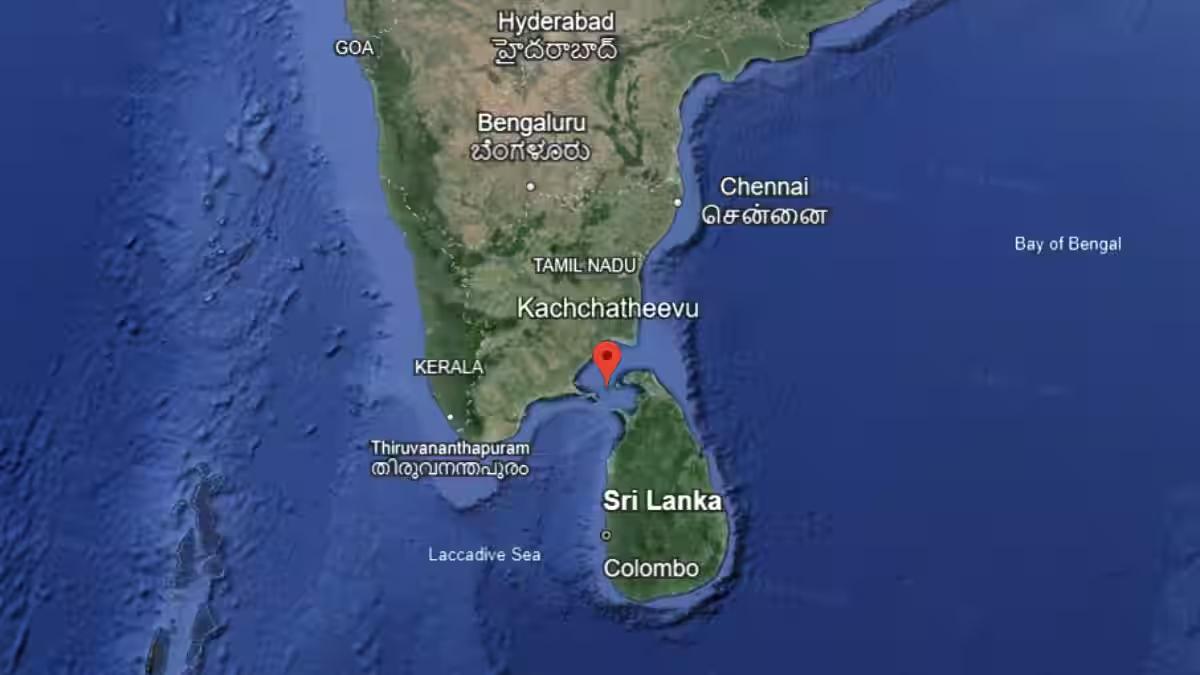
- 01 Apr 2024
Why is it in the News?
Prime Minister Narendra Modi once again attacked the Congress about its decision to “callously give away” the island of Katchatheevu.
About the Island of Katchatheevu:
- Katchatheevu is an uninhabited area located between India and Sri Lanka in the Palk Strait.
- It measures around 1.6 km in length and slightly over 300 m wide at its broadest point.
- Situated northeast of Rameswaram, it is approximately 33 km away from the Indian coast.
- Moreover, it is positioned about 62 km southwest of Jaffna, at the northern tip of Sri Lanka, and 24 km from the inhabited Delft Island, which is a part of Sri Lanka.
- Katchatheevu is not suited for permanent settlement as there is no source of drinking water on the island.
History of the island:
- Being the product of a 14-century volcanic eruption, Katchatheevu is relatively new in the geological timescale.
- In the early medieval period, it was controlled by the Jaffna kingdom of Sri Lanka.
- In the 17th century, control passed to the Ramnad zamindari based out of Ramanathapuram, about 55 km northwest of Rameswaram.
What is the dispute?
- The island became part of the Madras Presidency during the British Raj.
- But in 1921, both India and Sri Lanka, at the time British colonies, claimed Katchatheevu to determine fishing boundaries.
- A survey marked Katchatheevu in Sri Lanka, but a British delegation from India challenged this, citing ownership of the island by the Ramnad kingdom.
- This dispute was not settled until 1974.
What is the Agreement on Katchatheevu Island?
- In 1974, Indira Gandhi made attempts to settle the maritime border between India and Sri Lanka, once and for all.
- As a part of this settlement, known as the ‘Indo-Sri Lankan Maritime Agreement’, Indira Gandhi ‘ceded’ Katchatheevu to Sri Lanka.
- At the time, she thought the island had little strategic value and that ceasing India’s claim over the island would deepen its ties with its southern neighbor.
- Moreover, as per the agreement, Indian fishermen were still allowed to access Katchatheevu “hitherto”.
- Unfortunately, the issue of fishing rights was not ironed out by the agreement.
- Sri Lanka interpreted Indian fishermen’s right to access Katchatheevu to be limited to “rest, drying nets and for visit to the Catholic shrine without a visa”.
- Another agreement in 1976, during the period of Emergency in India, barred either country from fishing in the other’s Exclusive Economic Zone.
- Again, Katchatheevu lay right at the edge of the EEZs of either country, retaining a degree of uncertainty about fishing rights.
How did the Sri Lankan Civil War Impact Katchatheevu?
- Between 1983 and 2009, the border dispute remained on the back burner as a bloody civil war raged in Sri Lanka.
- With the Sri Lankan naval forces preoccupied with their task of cutting off supply lines of the LTTE based out of Jaffna, incursions by Indian fishermen well into Sri Lankan waters were commonplace.
- Bigger Indian trawlers were especially resented as they would not only tend to overfish but also damage Sri Lankan fishing nets and boats.
- In 2009, the war with the LTTE ended, and things dramatically changed. Colombo beefed up its maritime defenses and turned its focus to Indian fishermen.
- Facing a depletion of marine resources on the Indian side, they would frequently enter Sri Lankan waters as they had been doing for years, but finally began facing consequences.
- To date, the Sri Lankan navy routinely arrests Indian fishermen and there have been many allegations of custodial torture and death.
- The demand for Katchatheevu is revived each time such an incident happens.
Indian Government Stance on Katchatheevu Island:
- The Union government’s position on Katchatheevu has largely remained unchanged.
- It has argued that since the island had always been under dispute, “no territory belonging to India was ceded nor sovereignty relinquished.”
Real Estate (Regulation and Development) Act, 2016

- 01 Apr 2024
Why is it in the News?
Eight years after Parliament passed the Real Estate (Regulation and Development) Act, 2016, the Union Ministry of Housing and Urban Affairs is in the process of reviewing the functioning of the Act, including by holding regular meetings with homebuyers and setting up a data collection unit within the Ministry.
What Is Real Estate (Regulation & Development) Act, 2016 (RERA)?
- The Real Estate (Regulation & Development) Act, 2016 is an act of the Parliament of India that strives to protect home buyers and helps escalate the investment made in the real estate industry.
- It was established under this Act to regulate the real estate sector.
- Additionally, it acts as the adjudicating body for faster dispute resolution related to the real estate industry.
The Primary Objectives of the Act:
- Ensuring Transparency: Promoting transparency in the real estate sector regarding the sale of flats, apartments, plots, buildings, or any real estate project.
- Establishing Dispute Resolution: Setting up an adjudicating mechanism to swiftly resolve disputes.
- Protecting Buyer Interests: Safeguarding the interests of buyers/allottees in the real estate domain.
- Building Trust: Fostering trust between buyers and promoters by leveraging regulatory authority.
- Furthermore, the Act mandates that Real Estate Regulatory Authorities establish and maintain a web portal containing pertinent details of all registered real estate projects for public access.
Reasons for RERA Implementation:
- The introduction of RERA was necessitated by challenges faced by the Indian real estate sector since 2012, including factors such as unemployment, recession, low rental yield, inventory pile-up, and ambiguous tax and arbitration frameworks.
Projects Covered by RERA:
- RERA covers commercial and residential projects, including plotted developments, that exceed 500 square meters or comprise more than 8 units.
- Additionally, projects lacking a Completion Certificate prior to the Act's commencement are subject to its provisions.
Benefits of RERA Implementation:
- Standardization: RERA ensures uniformity in the real estate sector concerning aspects like carpet areas and common areas, thereby preventing malpractices such as alterations in layout, area, agreements, and specifications.
- It also mandates disclosure of details regarding brokers, architects, and contractors.
- Timely Delivery: Developers are obligated to adhere to scheduled delivery timelines for office spaces or homes.
- Failure to comply may result in stringent penalties or imprisonment for the developer.
- Regulatory Compliance: RERA mandates obtaining clearance from government departments before the sale of any residential or commercial property.
- Financial Transparency: Developers are required to maintain separate bank accounts for each project, enhancing financial transparency and accountability.
- Warranty Protection: Buyers are empowered to report any structural defects in the building to the developer within one year of possession, with the developer obligated to rectify them free of charge.
Challenges Associated with RERA:
- Limited Scope: The regulations of RERA do not extend to ongoing projects or those stalled due to clearance issues, potentially leaving certain projects outside its jurisdiction.
- Approval Delays: Delays in approval and clearance from government agencies may impede the timely completion and delivery of real estate projects, affecting both developers and buyers.
- Exemption for Small Developers: Small-scale developers overseeing projects smaller than 500 square meters are exempt from RERA's provisions, and registration with the regulatory authority is not compulsory for them.
- Project Launch Delays: Projects cannot be launched without necessary clearances, which may result in delays in the commencement of new projects.
India-led ‘Group of Friends’
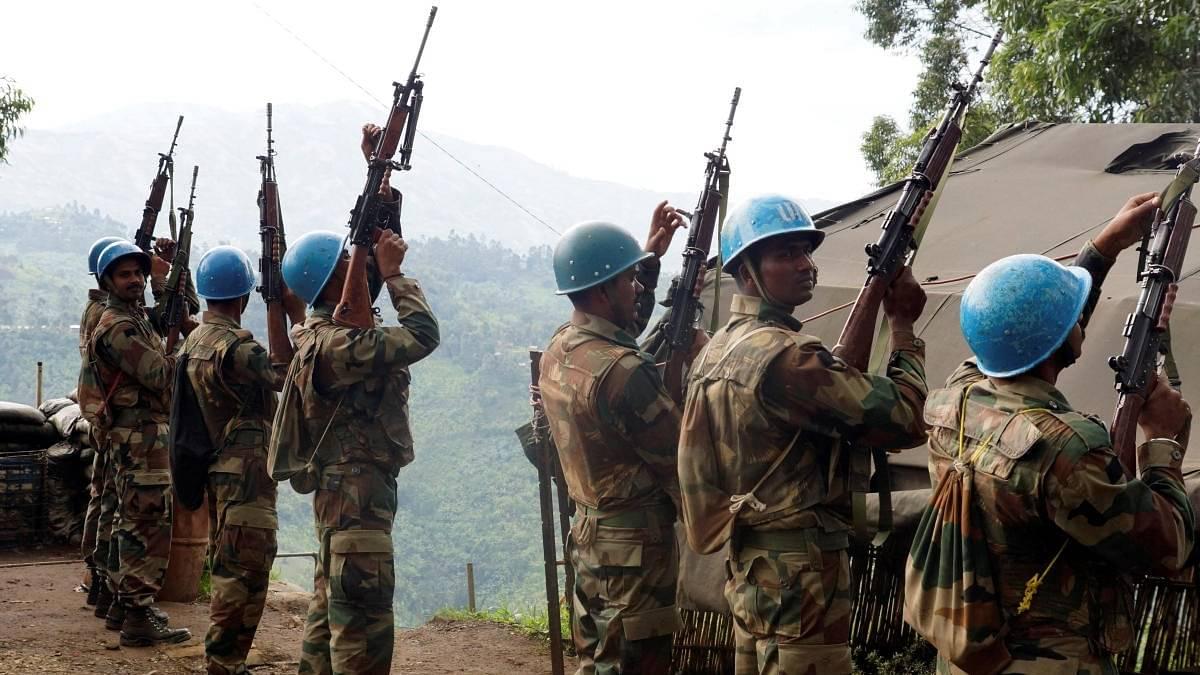
- 30 Mar 2024
Why is it in the News?
At a high-level meeting of the India-led 'Group of Friends (GOF), India launched a new database designed to record crimes against UN peacekeepers and monitor progress in holding perpetrators accountable.
About the 'Group of Friends':
- The Group of Friends (GOF) was launched by India in 2022 to promote accountability for crimes against the Blue Helmets during its presidency of the UN Security Council.
- India, Bangladesh, Egypt, France, Morocco, and Nepal are co-chairs of the GOF, which comprises 40 member states.
Key objectives of the group include:
- Engaging and sharing information with the UN Secretary-General to assist member states hosting or having hosted peacekeeping operations in bringing perpetrators of crimes against peacekeepers to justice.
- Serving as an informal platform at the UN to exchange information, share best practices, and mobilize resources to facilitate accountability for crimes against peacekeepers.
- Monitoring progress on bringing accountability for crimes against peacekeepers.
- The 'Group of Friends' will convene two meetings of its members per year and organize one event annually involving Permanent Missions and other stakeholders, ensuring greater safety and security for peacekeepers.
- This initiative represents the political will of member states, particularly troop and police contributing countries, to champion the implementation of UN Security Council resolution 2589, adopted in August 2021 under India's Presidency of the Council.
- Resolution 2589 called upon member states hosting or having hosted UN peacekeeping operations to take all appropriate measures to bring to justice perpetrators of violence against UN personnel, including their detention and abduction.
- The 'Group of Friends serves as a crucial platform for advancing this resolution, promoting accountability, and enhancing the protection of peacekeepers worldwide.
India's Significant Role in UN Peacekeeping:
- As a longstanding advocate for global peace and stability, India has demonstrated its commitment to United Nations (UN) peacekeeping operations.
- Over the past seven decades, India has contributed more than 260,000 peacekeepers, making it the largest cumulative contributor to UN peacekeeping missions.
- Despite the risks associated with such endeavors, India has remained steadfast in its support of peacekeeping efforts.
- Tragically, 177 Indian peacekeepers have made the ultimate sacrifice in the line of duty, reflecting India's dedication to fostering stability worldwide.
- Presently, India has more than 6,000 peacekeepers deployed in nine out of the twelve UN peacekeeping missions.
- As a strong proponent of accountability for crimes against peacekeepers, India plays a crucial role in advocating for the safety and security of these dedicated personnel.
C-Vigil App
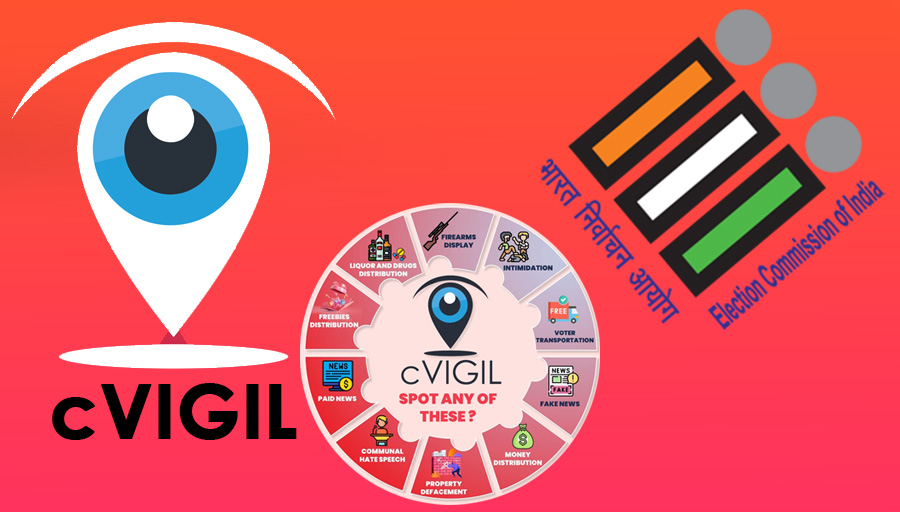
- 30 Mar 2024
Why is it in the News?
Ever since the general election was announced two weeks ago, a total of 79,000 violations have been reported on the Election Commission of India’s (ECI) cVigil app across the country.
About C-Vigil App:
- cVigil is a user-friendly and easy-to-operate application, that connects vigilant citizens with the District Control Room, Returning Officer and Field Unit (Flying Squads), or Static Surveillance Teams.
- By using this app, citizens can immediately report incidents of political misconduct within minutes and without having to rush to the office of the returning officer.
- As soon as the complaint is sent on the cVigil app, the complainant receives a unique ID, through which the person will be able to track the complaint on their mobile.
- This creates a rapid and accurate reporting, action, and monitoring system.
The cVIGIL app enabled voters to
- Register Complaints: The app allows every citizen within the election boundaries to report the Model Code of Conduct / Expenditure Violations by taking photos/audio/video through their mobile phones by signing into the application.
- Anonymous User: The app also allows the citizen to complain anonymously, without revealing their details/ identity.
- Geotagging: The app automatically enables a geo-tagging feature when users switch on their camera in the cVIGIL to report a violation, which helps the field unit to know the precise location of the incident.
Benefits of the Application:
- cVIGIL is a convenient and user-friendly app allowing citizens to send pictorial evidence of the model code of conduct violations in their vicinity.
- Each reported incident is tracked and scrutinized from the beginning to the endpoint, thus bringing accountability into the system.
- The immediate location verification feature of the cVIGIL will act as a strong deterrence for miscreants and wrong-doers as they can be easily tracked.
- A combination of all these factors will encourage citizens to keep vigil over unhealthy electoral practices and bring them to the notice of the Election Commission.
- This in turn will help the commission reach its objective of conducting free and fair elections.
Hume’s Empathic Voice Interface (EVI)

- 30 Mar 2024
Why is it in the News?
AI startup Hume unveiled a new voice interface yesterday that the company claims is “the first conversational AI with emotional intelligence.
What is an Empathic Voice Interface (EVI)?
- Empathic Voice Interface (EVI) by Hume, a New York-based research lab and technology company, is the world’s first emotionally intelligent voice AI.
- It accepts live audio input and returns both generated audio and transcripts augmented with measures of vocal expression.
- By processing the tune, rhythm, and timbre of speech, EVI unlocks a variety of new capabilities, like knowing when to speak and generating more empathic language with the right tone of voice.
- These features enable smoother and more satisfying voice-based interactions between humans and AI, opening new possibilities for personal AI, customer service, accessibility, robotics, immersive gaming, VR experiences, and much more.
- Developers can now seamlessly integrate EVI into various applications using Hume’s API, offering a unique voice interface experience.
EVI boasts several distinctive empathic capabilities:
- Human-Like Tone: EVI responds with tones resembling human expressions, enhancing the conversational experience.
- Responsive Language: It adapts its language based on the user’s expressions, addressing their needs effectively.
- State-of-the-Art Detection: EVI uses the user’s tone to detect the end of a conversation turn accurately, ensuring seamless interactions.
- Interruption Handling: While it stops when interrupted, EVI can effortlessly resume from where it left off.
- Self-Improvement: EVI learns from user reactions to continuously improve and enhance user satisfaction over time.
- In addition to its empathic features, EVI offers fast, reliable transcription and text-to-speech capabilities, making it versatile and adaptable to various scenarios.
- It seamlessly integrates with any Language Model Library (LLM), adding to its flexibility and utility.
What is an AI with Emotional Intelligence and How Can it be Used?
- Artificial Intelligence with emotional intelligence, also known as affective computing or emotion AI, refers to the integration of emotional awareness and intelligence into AI systems, enabling them to recognize, understand, and respond to human emotions.
- This capability draws inspiration from the concept of emotional intelligence in humans, which involves perceiving and managing emotions in both oneself and others.
- The development of emotionally intelligent AI involves leveraging advanced techniques in machine learning, natural language processing, and computer vision to enable AI systems to recognize emotions in facial expressions, speech, and text.
- These systems can adapt their responses based on recognized emotions, creating more empathetic and nuanced interactions between humans and AI.
Potential applications of AI with emotional intelligence include:
- Healthcare: Emotion-sensitive AI could help detect depression, anxiety, or other mental health issues by analyzing speech patterns, facial expressions, or social media posts.
- Education: AI systems could adapt to individual students' emotions, providing customized support and facilitating better learning experiences.
- Customer Service: Emotion AI could enable businesses to respond more appropriately to customer emotions, improving customer satisfaction and fostering long-term loyalty.
- Entertainment: Affective computing could make games and other entertainment experiences more immersive and engaging by adapting to users' emotions in real-time.
Great Indian Bustard (GIB)

- 29 Mar 2024
Why is it in the News?
The Supreme Court last week said it will review its April 2021 order to bury underground all power lines in the habitat of the Great Indian Bustard (GIB), after the Centre found the order “practically impossible to implement” over long distances.
About Great Indian Bustard:
- Great Indian Bustard (GIB) is an agro-grassland bird endemic to the Indian Subcontinent.
- Known locally as Godawan in Rajasthan, it is a Critically Endangered species as per the IUCN Red List.
- It belongs to the family Otididae and exhibits sexual dimorphism.
- The GIB is an omnivorous bird.
- The species has a current viable population of around 150 individuals in India and mainly survives in the Thar Desert of Rajasthan which holds about 100 individuals.
- Of the remaining individuals, these birds are found in Gujarat, Maharashtra, Karnataka, and Andhra Pradesh respectively.
- With fewer than 150 individuals, they are caught in a deadly maze of power lines that crisscross its last refuge in the Kutch and Thar deserts of western India.
Why Do Power Lines Kill Bustards?
- Power lines pose a risk to all flying birds.
- In 2020, a study carried out by the Wildlife Institute of India (WII) in 4,200 sq km of GIB habitat in and around Desert National Park (DNP) in Rajasthan estimated that power lines killed around 84,000 birds of multiple species every year.
- GIBs are especially vulnerable because of their narrow frontal vision and large size.
- Unlike some birds that have a panoramic vision around the head, species like raptors and bustards have extensive blind areas above their heads.
- When they stretch their head forward to scan the ground below, they fly blind in the direction of travel.
Arguments of the Centre:
- The Centre said taking lines of 66 KV and higher voltage underground was not feasible for the evacuation of bulk power due to constraints such as transmission losses, maintenance challenges, multiple cable joints, increased time requirements, and safety concerns.
- The cost implications of undergrounding all power lines in the large area identified are very heavy — running into many thousands of crores and the cost of externalities that will burden the nation was “huge” and “disproportionate”.
- Harnessing renewable power from high-potential areas of Rajasthan and Gujarat was “essential for meeting rising power demand and India’s international commitments on climate change”.
Other threats faced by GIB:
- Free-ranging dogs pose a significant threat to the Great Indian Bustard (GIB) population, particularly in the Thar landscape, with feral packs responsible for a substantial portion of Chinkara depredation in the Desert National Park (DNP) as of 2017.
- Although sporadic hunting of GIBs persists, the prevalent use of pesticides in agricultural areas poses a more substantial risk to the bird's survival.
- Additionally, habitat loss, particularly the decline of grasslands essential for nesting, and diminishing support from local communities are growing concerns.
CoViNet
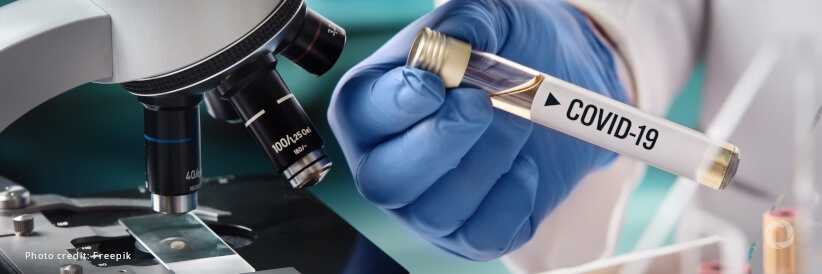
- 29 Mar 2024
Why is it in the News?
The World Health Organization (WHO) has launched a global network of laboratories to identify and monitor potentially novel coronaviruses that could emerge shortly.
What is CoViNet?
- The Coronavirus Network (CoViNet) is a global collaboration of laboratories with expertise in human, animal, and environmental coronavirus surveillance.
- This network aims to identify and monitor potential new coronaviruses that could emerge and impact public health worldwide.
- To enhance pandemic preparedness, CoViNet will expand its scope to include animal health and environmental surveillance, as well as timely risk assessments.
- This will allow the World Health Organization (WHO) to develop more informed policies and protective measures against future viral outbreaks.
- CoViNet will also play a pivotal role in building and supporting laboratory capacities in low- and middle-income countries to monitor MERS-CoV and other emerging coronaviruses of public health importance.
- By fostering knowledge exchange and capacity building, CoViNet aims to strengthen the global response to coronavirus threats.
- Furthermore, data generated through CoViNet's efforts will guide the work of the WHO's Technical Advisory Groups on Viral Evolution (TAG-VE) and Vaccine Composition (TAG-CO-VAC). These groups rely on cutting-edge research and surveillance data to inform public health policies and vaccination strategies.
- With 36 laboratories from 21 countries across all six WHO regions, CoViNet currently encompasses a wide range of expertise and resources.
- Three Indian institutions, namely, the Council of Scientific and Industrial Research-National Environmental Engineering Research Institute, the Indian Council of Medical Research-National Institute of Virology in Pune, and the Translational Health Science and Technology Institute, proudly represent the country in this global network dedicated to coronavirus surveillance and preparedness.
About the World Health Organization (WHO):
- The World Health Organization (WHO) stands as a paramount global health authority, dedicated to promoting health, preventing diseases, and improving healthcare systems worldwide.
- Established in 1948, WHO operates as a specialized agency of the United Nations, with its headquarters in Geneva, Switzerland.
- It collaborates with governments, international organizations, and civil society to address pressing health challenges and provide guidance and support to countries in need.
- WHO's mandate encompasses a wide array of health-related issues, including infectious diseases, non-communicable diseases, mental health, maternal and child health, and environmental health.
- Through research, policy development, and technical assistance, WHO plays a vital role in shaping health policies, setting standards, and coordinating responses to health emergencies such as pandemics and natural disasters.
- With a mission to ensure the highest attainable level of health for all people, WHO continues to lead efforts in global health governance, advocacy, and capacity-building, striving for a healthier, safer, and more equitable world.
United Nations High Commissioner for Refugees (UNHCR)
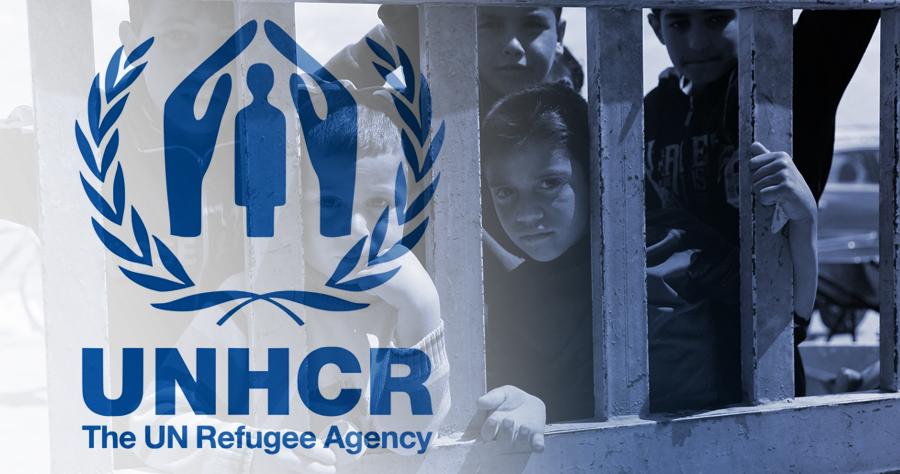
- 29 Mar 2024
Why is it in the News?
According to the United Nations High Commissioner for Refugees (UNHCR), in 2023, more than 4,500 Rohingya refugees embarked on a perilous journey across the Bay of Bengal and the Andaman Sea.
About the United Nations High Commissioner for Refugees (UNHCR):
- UNHCR, the UN Refugee Agency, is a global organization dedicated to saving lives, protecting rights, and building a better future for people forced to flee their homes because of conflict and persecution.
- It leads international action to protect refugees, forcibly displaced communities, and stateless people.
- Formally known as the Office of the High Commissioner for Refugees, UNHCR was established by the General Assembly of the United Nations in 1950 in the aftermath of the Second World War to help the millions of people who had lost their homes.
- Today, UNHCR operates in 137 countries and provides life-saving assistance, including shelter, food, water, and medical care for people forced to flee conflict and persecution, many of whom have nobody left to turn to.
- UNHCR defends their right to reach safety and helps them find a place to call home so they can rebuild their lives.
- UNHCR also collaborates with countries to improve and monitor refugee and asylum laws and policies, ensuring that human rights are upheld.
- UNHCR considers refugees and those forced to flee as partners, putting those most affected at the center of planning and decision-making.
Who are the Rohingya Refugees?
- Rohingya are an ethnic group, largely comprising Muslims, who predominantly live in the Western Myanmar province of Rakhine.
- They speak a dialect of Bengali, as opposed to the commonly spoken Burmese language.
- Though they have been living in the South East Asian country for generations, Myanmar considers them as persons who migrated to their land during Colonial rule so, it has not granted Rohingyas full citizenship.
- According to the 1982 Burmese citizenship law, a Rohingya (or any ethnic minority) is eligible for citizenship only if he/she provides proof that his/her ancestors have lived in the country before 1823. Otherwise, they are classified as “resident foreigners” or as “associate citizens” (even if one of the parent is a Myanmar citizen).
- Since they are not citizens, they are not entitled to be part of civil service. Their movements are also restricted within the Rakhine state.
South East Africa Montane Archipelago (SEAMA)
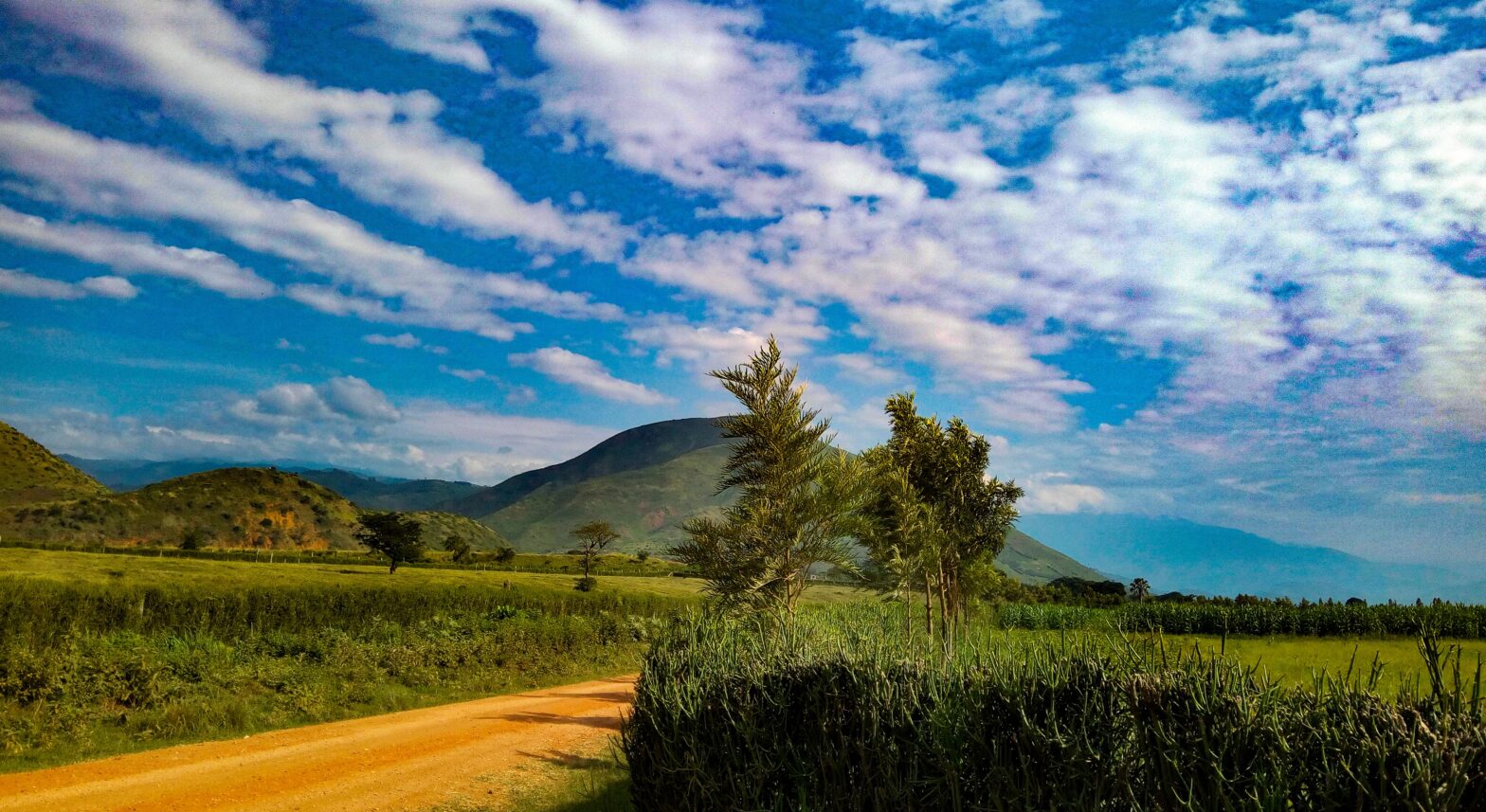
- 28 Mar 2024
Why is it in the News?
A recent investigation in southern Africa has revealed a plethora of previously undiscovered biodiversity within a newly identified ecoregion known as the South East Africa Montane Archipelago (SEAMA).
About South East Africa Montane Archipelago (SEAMA):
- It represents a newly identified mountainous ecoregion spanning from northern Mozambique to Mount Mulanje in Malawi, which is the second-highest peak in southern Africa.
- This ecoregion comprises 30 granitic inselbergs rising over 1000 meters above sea level, hosting both the largest (Mt Mabu) and smallest (Mt Lico) mid-elevation rainforests in southern Africa, alongside uniquely diverse montane grasslands.
- SEAMA experiences notably higher annual rainfall and humidity, particularly during the dry season, compared to its surrounding areas.
- Since 2000, SEAMA has witnessed a loss of 18% of its primary humid forest cover, with rates reaching up to 43% in certain locations—marking one of the most rapid deforestation rates across Africa.
- The principal cause of montane forest depletion in SEAMA stems from slash-and-burn agricultural practices, predominantly employed for subsistence food cultivation by local communities, alongside charcoal production for household cooking and economic purposes.
What are Inselbergs?
- Inselbergs are solitary geological formations characterized by isolated, steep-sided hills or small mountains rising abruptly from flat or gently sloping terrain.
- Composed of erosion-resistant rock, such as granite or quartzite, inselbergs stand out prominently in landscapes, with steep or even vertical sides resulting from differential erosion processes.
- These formations, found predominantly in arid or semi-arid regions, take various shapes, including dome-shaped hills, conical peaks, or sheer-sided cliffs.
- Despite their isolated nature, inselbergs support unique ecosystems and biodiversity, creating microclimates and habitats for specialized plant and animal species.
- Rock crevices, caves, and pockets of soil on inselbergs harbor distinct flora and fauna adapted to harsh conditions, making these formations biodiversity hotspots.
- Additionally, inselbergs often hold cultural and spiritual significance for indigenous peoples and local communities, serving as sites for religious rituals, cave paintings, or archaeological artifacts.
- However, inselbergs face threats such as deforestation and habitat degradation due to human activities like slash-and-burn agriculture and charcoal production.
- Conservation efforts are crucial to protect these geological wonders and preserve their ecological and cultural significance for future generations.
Krishi Integrated Command and Control Centre (ICCC)
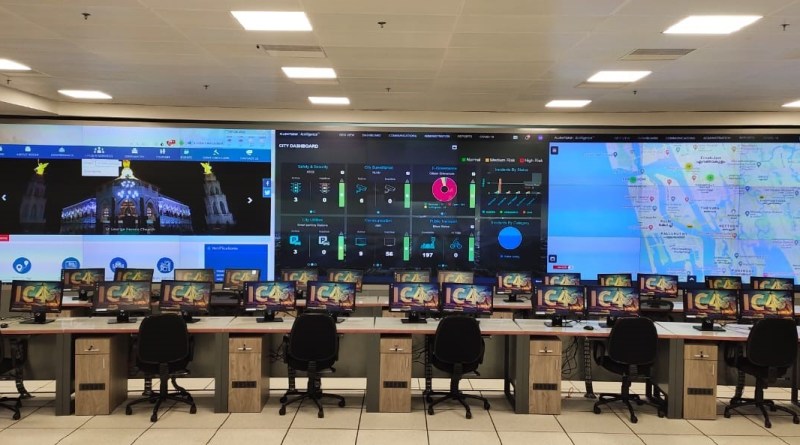
- 27 Mar 2024
Why is it in the News?
Earlier this month, Agriculture Minister Arjun Munda inaugurated a Krishi Integrated Command and Control Centre (ICCC) set up at Krishi Bhavan in New Delhi, a big-screen dashboard of all digital innovations in the sector.
What is the Krishi ICCC?
- The ICCC is a tech-based solution involving multiple IT applications and platforms, designed to help make informed decisions.
- The center is housed in the Ministry of Agriculture & Farmers’ Welfare and is responsible for legislation, policy formation, and implementation of initiatives in the agriculture sector.
- The ICCC uses state-of-the-art technologies such as artificial intelligence, remote sensing, and Geographic Information Systems (GIS) to collect and process large amounts of granular data.
- The ICCC uses platforms including the Krishi Decision Support System (DSS) to collect micro-level data, process it, and present the macro picture.
How does the Krishi ICCC Operate?
- Using AI and machine learning, the system will initially identify a farmer either through their mobile number or Aadhaar details.
- Next, it will cross-reference this information with the farmer's field data retrieved from land records, as well as historical crop sowing data from the crop registry, and weather information from IMD, among other sources.
- Subsequently, the system will generate personalized advisories tailored to the farmer's needs, presented in their local language.
- This functionality will be facilitated through the Bhashini platform, enabling translations into multiple Indian languages.
What Information Does the Krishi ICCC Offer?
- Displayed on eight expansive 55-inch LED screens within the ICCC, the system provides comprehensive data covering various aspects such as temperatures, rainfall, wind speed, crop yields, production statistics, drought conditions, cropping patterns (both geographically and over time), and production forecasts.
- This information is presented in a graphical, map-based, timeline, and drill-down formats for enhanced visualization and analysis.
- Additionally, users can access pertinent trends, including periodic and non-periodic variations, outliers, and Key Performance Indicators (KPIs), alongside receiving insights, alerts, and feedback concerning agriculture schemes, programs, projects, and initiatives.
- Moreover, the system facilitates direct interaction between farmer beneficiaries and officials or the Minister through video conferencing facilities, ensuring effective communication and support.
Practical Applications:
- Farmer’s Advisory: The ICCC allows visualization of GIS-based soil carbon mapping as well as soil health card data for a particular district together in one place.
- This, when visualized with weather-related data from IMD for the selected district, will allow a customized and authentic advisory to be sent to the farmer about the type of crops that can be grown, and water and fertilizer requirements.
- Drought Actions: An increase or decrease in yield from a specific region (as per GCES data) can be correlated with weather, rainfall, and other information visualized through the Drought Portal, enabling the administration to understand the reason for the increase/ decrease in yield and to take decisions proactively.
- Crop Diversification: An analysis of crop diversification maps, together with field variability for paddy, will enable decision-makers to identify regions with scope for diversified cropping so that farmers can be advised accordingly.
- Farm Data Depository: Krishi Decision Support System (K-DSS), a platform under development, will act as an agriculture data repository. Integrated spatial and non-spatial data will be superimposed as a layer on the GIS map, and various AI/ ML models will be run on the data.
- The K-DSS will help in evidence-based, efficient, and data-driven decision-making, and assist in preparing customized advisories for farmers.
- Validation of Yield: Yield, as captured through Krishi MApper, can be analyzed with the yield generated through GCES application for a plot.
Armed Forces (Special Powers) Act (AFSPA)
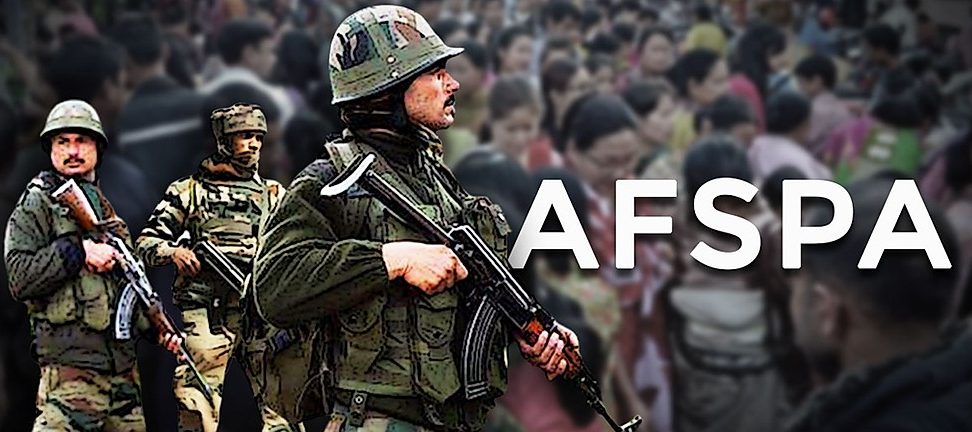
- 27 Mar 2024
Why is it in the News?
Union Home Minister Amit Shah has said the Jammu and Kashmir Assembly elections will be held before September and that the Centre will consider revoking the Armed Forces (Special Powers) Act there.
What is AFSPA?
- The AFSPA empowers the armed forces to uphold law and order in “disturbed areas.”
- They have the right to prevent a gathering of five or more people in a given location, use force, or even open fire after providing a sufficient warning if they believe someone is breaking the law.
- Armed forces are also permitted to enter and search any location if they suspect illegal activity.
- According to the AFSPA Act, the Army also has the authority to detain someone without a warrant, seize weapons and ammunition, and offer protection to someone acting in good faith.
Salient features of the AFSPA Act:
- The Central Government or the Governor of a State has the right to declare all or a part of any state to be a disturbed region if they believe it is necessary to stop the terrorist activity or any other activity that could jeopardize India’s sovereignty or be disrespectful to the national anthem, flag, or constitution.
- According to Section 3 of the AFSPA, the Central Government may send out armed forces to support the civilian authorities if the governor of a state publishes a formal announcement in the Gazette of India.
- According to the Disturbed Areas Act of 1976, a territory must maintain the status quo for a minimum of three months after being designated “disturbed.”
- Section (4) of the AFSPA grants army officers specific authority to shoot the only requirement is that the officer must sound the alarm before firing.
- Security forces have the authority to search without permission and arrest anyone without a warrant.
- After being taken into custody, a person must be delivered to the closest police station as soon as possible.
- The Central Government must first provide its consent before prosecuting an on-duty officer for alleged human rights violations.
What are the “Disturbed areas” under the AFSPA Act?
- The state governor, the administrator of the union territory, or the central government may declare a region as a “disturbed area” by publishing a notice in the official gazette, the entire territory or an order to implement it may be declared disturbed.
- It is up to the state governments to decide whether or not to implement the Act.
- However, the governor or the Center may disregard their judgment under Section (3) of the Act.
- The state governor was the only person with the authority to confer AFSPA when the act came into force in 1958.
- The 1978 amendment granted the central government this authority.
List of states that implement the AFSPA Act:
- Four states and one union territory currently have AFPSA activities, while 12 districts are still partially subject to the act, and 31 districts have fully implemented the law.
The AFSPA states include:
-
- Jammu & Kashmir
- Nagaland
- Assam
- Arunachal Pradesh
- Manipur
District Election Management Plan
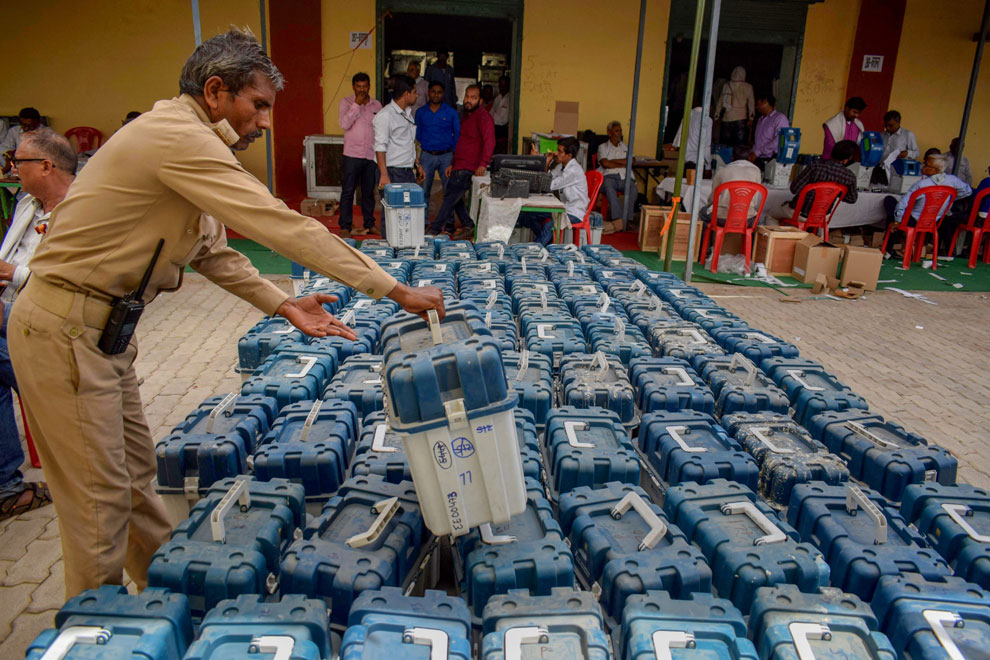
- 26 Mar 2024
Why is it in the News?
Effective execution of elections demands thorough planning, where a crucial aspect is the meticulous formulation and implementation of the District Election Management Plan (DEMP).
About the District Election Management Plan (DEMP):
- The District Election Management Plan (DEMP) is a comprehensive document designed to ensure the smooth conduct of elections, employing statistics and analysis.
- According to the Election Commission of India, the DEMP must be prepared at least six months before the tentative poll day.
- Collaboration among election officials, administrative authorities, law enforcement agencies, etc., is crucial for the execution of the DEMP.
Key components of the DEMP include:
- District Profile: A district profile providing foundational electoral strategy, featuring political maps outlining constituencies, key demographic and infrastructure statistics, and a brief on the district’s administrative setup and socio-economic features.
- Polling Stations: Detailed strategies for enhancing the availability and accessibility of polling stations, ensuring essential facilities such as ramps, electricity, lighting, drinking water, toilets, and internet connectivity.
- Special Attention to PwD and Senior Citizens: Addressing the requirements of voters with disabilities and senior citizens through dedicated help desks, round-the-clock control rooms, home voting options, and advanced postal ballot voting for essential service personnel.
- Systematic Voters’ Education and Electoral Participation (SVEEP) Plan: Integration of the Systematic Voters’ Education and Electoral Participation (SVEEP) plan, focused on increasing electoral participation.
-
- Planning, training, welfare, and deployment strategies for election personnel, along with training initiatives for district-level teams to enforce the Model Code of Conduct (MCC) and equip all election personnel with the necessary skills and knowledge.
Regarding Electronic Voting Machines (EVMs)?
- Management of Electronic Voting Machines (EVMs) is vital to uphold the integrity of the electoral process, encompassing strategies for secure storage, availability, transportation, and maintenance of both EVMs and Voter Verifiable Paper Audit Trails (VVPATs).
- The District Election Management Plan (DEMP) contributes to enhancing the voting process by ensuring its organization and accessibility to all voters.
- Furthermore, the principles employed in the DEMP, such as meticulous planning, collaboration, and transparency, offer valuable insights applicable beyond elections, providing lessons for broader governance.
- The emphasis on advanced planning, data-driven decision-making, and stakeholder collaboration highlighted by the DEMP is instrumental in addressing challenges effectively.
Order of the Druk Gyalpo
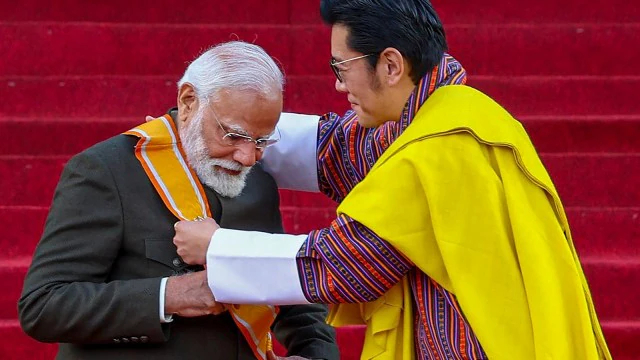
- 23 Mar 2024
Why is it in the News?
Prime Minister Narendra Modi recently received Bhutan’s highest civilian award, the ‘Order of the Druk Gyalpo’, during his two-day State visit to the neighboring nation.
What is the ‘Order of the Druk Gyalpo’ Award?
- The Order of the Druk Gyalpo, Bhutan's most prestigious civilian award, was recently conferred upon Indian Prime Minister Narendra Modi during his two-day State visit to the neighboring nation.
- As the first foreign Head of Government to receive this esteemed accolade, Prime Minister Modi joins a select group of individuals honored for their exceptional contributions to Bhutanese society, service, integrity, and leadership.
- According to the ranking and precedence established within Bhutan's honor system, the Order of the Druk Gyalpo represents the pinnacle of lifetime achievement, taking precedence over all other orders, decorations, and medals.
- Prime Minister Modi received the award in recognition of his outstanding contributions to strengthening India-Bhutan relations and his dedicated service to the Bhutanese nation and its people.
- Past recipients of the Order of the Druk Gyalpo include:
- Her Majesty The Royal Queen Grandmother Ashi Kesang Choden Wangchuck in 2008
- His Holiness Je Thrizur Tenzin Dendup in 2008, and
- His Holiness Je Khenpo Trulku Ngawang Jigme Choedra in 2018.
- With Prime Minister Modi's recent addition to this esteemed list, the Order of the Druk Gyalpo continues to symbolize Bhutan's appreciation for remarkable individuals who significantly impact the country and its people.
Netravati River
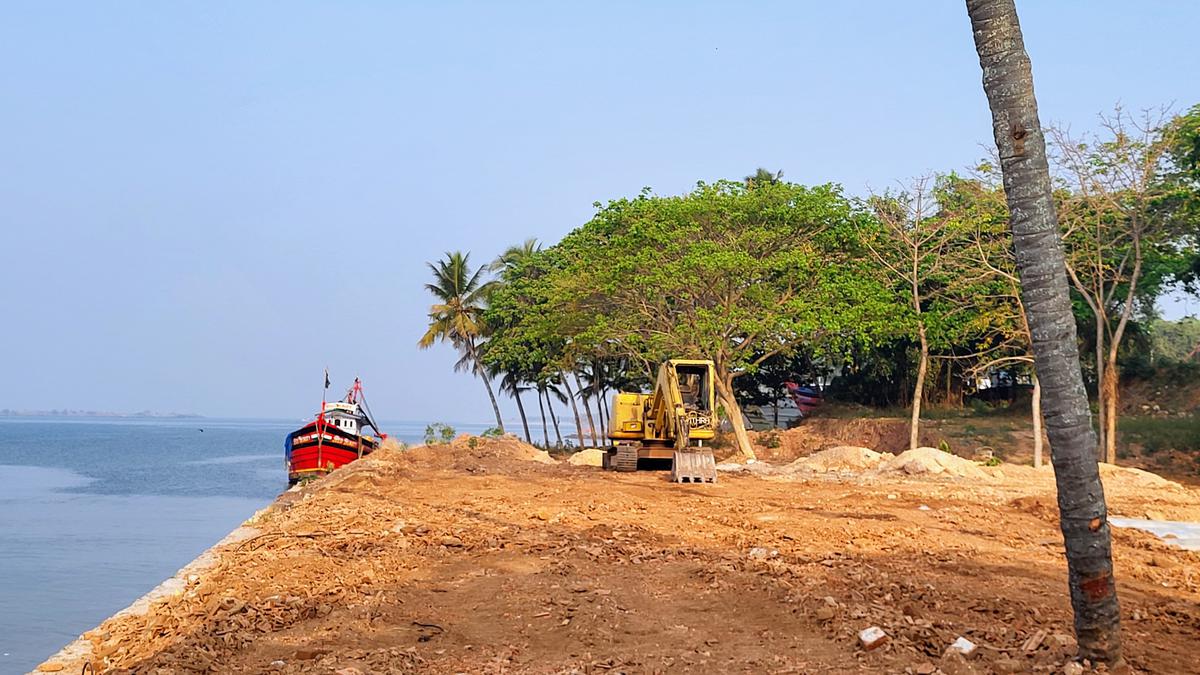
- 23 Mar 2024
Why is it in the News?
The principal bench of the National Green Tribunal (NGT) in New Delhi has initiated action on the Netravati Waterfront Promenade Development Project in Mangaluru.
About the Netravati River:
- The Netravati River, also known as Netravathi Nadi, originates from the Bangrabalige valley, Yelaneeru Ghat in Kudremukh, Chikkamagaluru district, Karnataka, India.
- It passes through the revered pilgrimage site Dharmasthala, earning recognition as one of India's sacred rivers.
- Converging with the Kumaradhara River at Uppinangadi, it eventually flows into the Arabian Sea, south of Mangalore city, serving as the primary water source for Bantwal and Mangalore.
- The Netravati railway bridge, a prominent structure, acts as the gateway to Mangalore.
- Historically known as the Bantwal River, it was documented as unfordable during the South-West Monsoon in the 1855 Gazetteer of Southern India.
- The river's navigability by small country craft and its influence on local geography and transport, including the naming of the Netravati Express train, underscores its significance in the region's history.
- Instances of flooding, notably in 1928 and 1974, have shaped the lives of residents, prompting relocations and resilience
About the National Green Tribunal:
- The National Green Tribunal (NGT) was established under the National Green Tribunal Act of 2010.
- While its principal seat is located in New Delhi, it also holds sessions in Bhopal, Pune, Kolkata, and Chennai.
- The NGT is entrusted with the responsibility of adjudicating applications or appeals, ensuring their final disposition within six months of filing.
Composition:
- The tribunal comprises a Chairperson, Judicial Members, and Expert Members, each serving a non-renewable term of five years.
- The appointment of the Chairperson is made by the Central Government in consultation with the Chief Justice of India (CJI).
- A Selection Committee, constituted by the Central Government, is responsible for appointing both Judicial and Expert Members.
- The tribunal can accommodate a minimum of 10 and a maximum of 20 full-time Judicial and Expert Members.
Powers & Jurisdiction:
- Established to efficiently handle cases concerning environmental protection and conservation of natural resources, including forests.
- It possesses appellate jurisdiction akin to a court.
- While not bound by the procedural formalities outlined in the Code of Civil Procedure, 1908, the NGT operates based on the principles of natural justice.
Jaipur’s traditional celebrations with ‘Gulaal Gota’
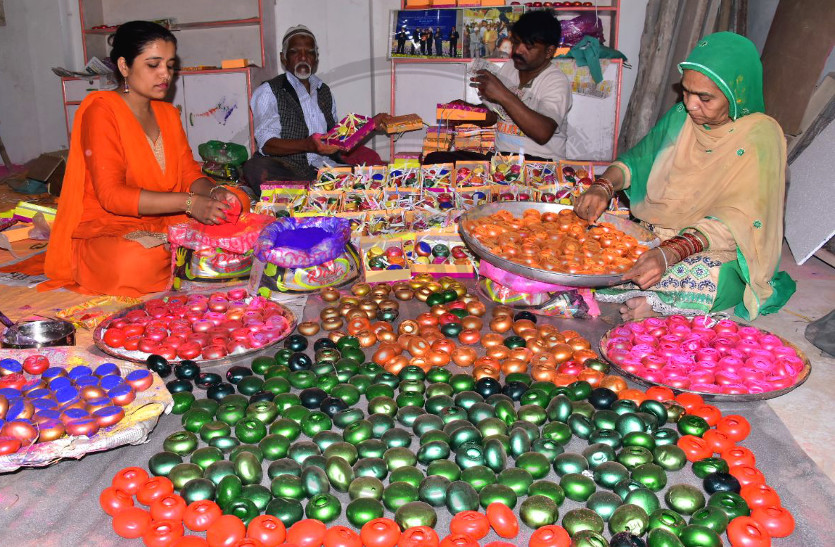
- 23 Mar 2024
Why is it in the News?
In Jaipur, Rajasthan, a centuries-old tradition called "Gulaal Gota" will be observed during Holi, involving the throwing of colors through a unique medium, dating back around 400 years.
What is a Gulaal Gota?
- A Gulaal Gota is a small ball made of lac, filled with dry gulaal.
- Weighing around 20 grams when filled with gulaal, these balls are thrown at people on Holi, getting smashed to bits on impact.
- Local artisans say that making Gulaal Gotas involves first boiling the lac in water to make it flexible.
- Lac is a resinous substance that is secreted by certain insects. It is also used to make bangles.
- After shaping the lac, colour is added to it. At first red, yellow, and green are added as other colours can be obtained through their combinations.
- After the processing is done, artisans heat the lac.
- It is then blown into a spherical shape with the help of a blower called “phunkni”.
- Then, gulaal is filled in the balls before they are sealed with lac.
Where does the raw material for Gulaal Gota come from?
- Lac is brought from Chhattisgarh and Jharkhand.
- The female scale insect is one of the sources of lac.
- To produce 1 kg of lac resin, around 300,000 insects are killed.
- The lac insects also yield resin, lac dye, and lac wax.
How did Gulaal Gotas become a tradition in Jaipur?
- Gulaal Gotas are made by Muslim lac makers, called Manihaars, only in Jaipur.
- Manihaars’ ancestors were shepherds and horse traders who arrived from Afghanistan.
- They settled in Bagru, a town located close to Jaipur, and learned lac-making from Hindu lac makers or Lakhere.
- The city of Jaipur was established in 1727. Its founder Sawai Jai Singh II, an admirer of art, dedicated a lane at the Tripoliya Bazaar to the Manihaar community.
- This is where lac bangles, jewelry, and Gulaal Gota are mostly sold, to date.
What is the economics of this tradition?
- One box of six Gulaal Gota balls is sold for Rs 150, which is much costlier than water balloons.
- Usually, the whole family of artisans is engaged in this work, including women.
- For Manihaars, lac bangles are the main source of sustenance as making Gulaal Gota is a seasonal work.
- Artisans say that the bangles are eco-friendly as they are made without any chemicals.
Why the demand is falling?
- Jaipur has of late become a hub of many factories where cheap, chemical-based bangles are made with minimum lac.
- Original lac bangles are costlier than the manufactured ones. Hence, the demand for lac-only bangles has fallen.
- Many of the community’s younger members are also more interested in taking up blue-collar jobs instead of artisan work.
Government Support and Artisan Empowerment:
- The Indian government has issued artisan cards to Lac Bangle and Gulaal Gota craftsmen, enabling them to access benefits under various government schemes.
- Many artisans have ventured abroad to exhibit their craft, such as Awaz Mohammad, who was invited to showcase his work at the G20 summit in New Delhi last year.
- In efforts to preserve tradition, some Gulaal Gota artisans are advocating for a Geographical Indication (GI) tag, which can enhance product visibility and underscore its unique regional identity.
Shanghai Cooperation Organisation (SCO) Startup Forum
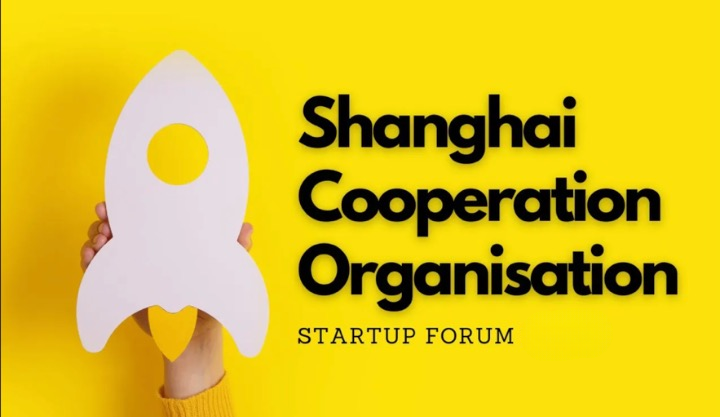
- 22 Mar 2024
Why is it in the News?
India will host the fifth meeting of the Shanghai Cooperation Organisation startup forum in January next year according to the commerce and industry ministry.
About the Shanghai Cooperation Organisation Startup Forum:
- The SCO Startup Forum is a platform for the stakeholders from the startup ecosystems from all SCO Member States to interact and collaborate.
- The entrepreneurial activities aim to empower the local startup communities in the SCO Member States.
- The SCO Startup Forum aims to create multilateral cooperation and engagement for startups among the SCO Member States.
- This engagement will empower the local startup ecosystems in the SCO Member States.
The following are the objectives of the engagement:
- Sharing of best practices to promote entrepreneurship and innovation to build knowledge-exchange systems
- Bringing Corporations and Investors across to work closely with startups and provide local entrepreneurs with much-needed support and market access
- Increasing scaling opportunities for startups by providing solutions in the field of social innovation and providing Governments with a plethora of innovative solutions
- Creating open procurement channels to enable matchmaking for procuring innovative solutions from startups
- Facilitating cross-border incubation and acceleration programs that will enable the startups to explore international markets and get focused mentorship.
Upcoming Events:
- India is set to host the second meeting of the Special Working Group for Startups and Innovation (SWG) in November 2024 and the SCO Startup Forum 5.0 in January 2025.
Past Initiatives:
- SCO Startup Forum 1.0: Established in 2020, laying the groundwork for multilateral cooperation among SCO Member States' startups.
- SCO Startup Forum 2.0: Held virtually in 2021, introducing the SCO Startup Hub, a centralized platform for the SCO startup ecosystem.
- SCO Startup Forum 3.0: Organized physically in 2023 by the Department for Promotion of Industry and Internal Trade (DPIIT), marking a significant milestone for SCO Member States' startup collaboration.
- 1st Meeting of the SWG: Led by India, the first meeting of the SCO Special Working Group on Startups and Innovation in 2023 focused on the theme 'Growing from Roots', emphasizing foundational growth within the startup ecosystem.
International Telecommunication Union (ITU)
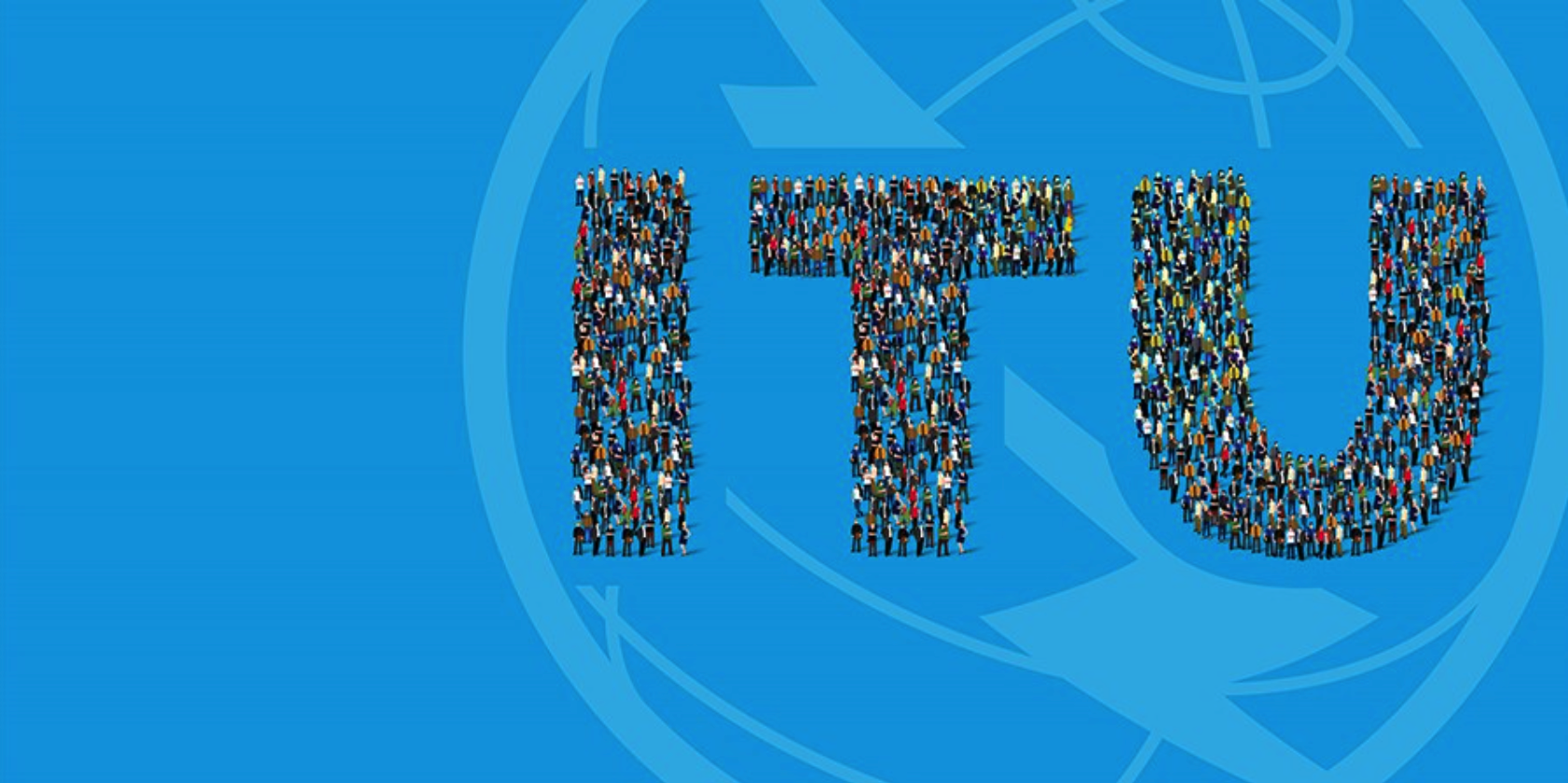
- 22 Mar 2024
Why is it in the News?
Dr. Neeraj Mittal's unanimously elected as co-chair of the International Telecommunication Union (ITU)'s digital innovation board recently.
About the International Telecommunication Union (ITU):
- Established in 1865 as the International Telegraph Union, the ITU has evolved into the United Nations specialized agency for information and communication technologies (ICT).
- Recognized as a vital intergovernmental organization, the ITU facilitates collaboration between governments and private sector entities to advance global telecommunication and ICT services.
Key Points:
- Status: Designated as a specialized agency of the United Nations in 1947.
- Membership: Boasting a diverse membership of 193 countries and over 1000 companies, universities, and international and regional organizations.
Functions:
- Allocation of global radio spectrum and satellite orbits.
- Coordination and establishment of technical standards about telecommunication/ICT.
- Initiatives to enhance ICT accessibility in underserved communities worldwide.
- India's Engagement: India has maintained an active presence within the ITU since 1869, consistently participating in its endeavors.
- Notably, India has been a regular member of the ITU Council since 1952.
- Headquarters: Located in Geneva, Switzerland, the ITU serves as the global epicenter for fostering collaboration and innovation in the realm of ICT.
What is the Digital Innovation Board?
- The Digital Innovation Board is a pivotal component of the Innovation and Entrepreneurship Alliance for Digital Development, aimed at addressing pressing needs within the realm of innovation as outlined in the Kigali Action Plan, which was adopted at the World Telecommunication Development Conference 2022.
- Comprised of Ministers and Vice Ministers of Telecom/ICT from 23 Member Countries of the International Telecommunication Union (ITU), spanning across Asia, Europe, Africa, and North, and South America, this board serves as a strategic advisory body.
- ITU initiated the Innovation and Entrepreneurship Alliance for Digital Development to tackle significant challenges and opportunities in innovation.
- This alliance operates through three key mechanisms:
- The Digital Transformation Lab
- The Network of Acceleration Centers, and
- The Digital Innovation Board.
- The Digital Innovation Board's primary objective is to offer strategic guidance, expertise, and advocacy in promoting local capacity building, fostering innovation, and encouraging entrepreneurship in digital development.
- Its overarching mission is to cultivate a more inclusive and equitable digital future for all stakeholders.
International Day of Forests 2024
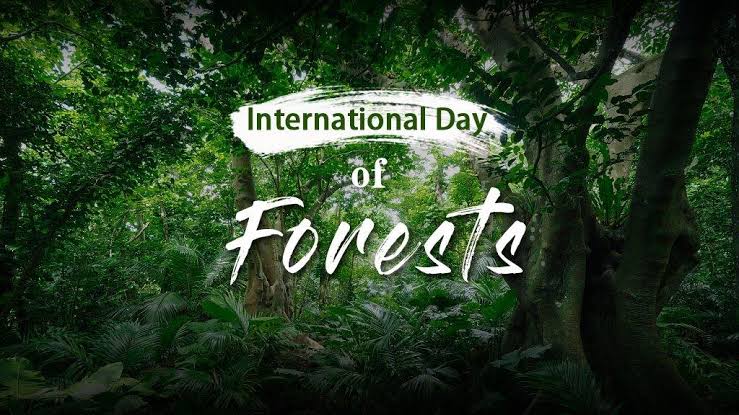
- 21 Mar 2024
Why is it in the News?
On March 21, 2024, people around the world celebrate World Forest Day. It's a day to remind everyone about how important forests are and all the good things they do for us.
About World Forest Day:
- World Forestry Day, also known as International Day of Forests, is celebrated on March 21 each year.
- The day aims to promote the sustainable management, conservation, and development of all types of forests for the benefit of current and future generations.
The theme for International Day of Forests 2024:
- This year's theme, "Forests and Innovation: New Solutions for a Better World" highlights the critical role of innovation and technology in protecting our forests.
- From advanced monitoring systems that track deforestation to sustainable forestry practices, innovation is key to overcoming the challenges threatening our forests.
History of International Day of Forests:
- The United Nations General Assembly announced March 21 to be the International Day of Forests in 2012.
- The day aims to respect and promote the value of a wide range of forests. Countries are encouraged to take part in regional, global, and local drives to set up a scope of forest and tree-related campaigns, like planting campaigns.
- The Food and Agriculture Organization of the United Nations (FAO) and the United Nations Forum on Forests are the coordinators of the International Day of Forests.
Importance of International Day of Forests:
- As per the UNGA, "The United Nations Forum on Forests and the Food and Agriculture Organization of the United Nations (FAO), in collaboration with Governments, the Collaborative Partnership on Forests and other relevant organizations in the field are responsible for organizing the events and campaigns related to the World Forestry Day."
- The importance of the International Day of Forests is to spread awareness and give instruction at all levels to guarantee feasible forest management and biodiversity preservation.
The Enduring Significance of Forests:
- Forests are often referred to as the "lungs of the planet" for a reason.
They play a vital role in:
- Combating Climate Change: Forests act as carbon sinks, absorbing and storing vast amounts of carbon dioxide, a major greenhouse gas.
- Protecting Biodiversity: Forests provide habitats for countless species of plants and animals, ensuring the health and balance of ecosystems.
- Providing Clean Air and Water: Forests filter air and water, regulating our climate and providing us with essential resources.
- Supporting Livelihoods: Millions of people around the world depend on forests for food, medicine, and income generation.
Celebrating and Taking Action:
- World Forestry Day is a springboard for action and we can get involved by:
- Support Organizations: Donate to or volunteer with organizations working towards forest conservation and sustainable forestry practices.
- Reduce Consumption: Make conscious choices to reduce consumption of paper and wood products, minimizing environmental footprint.
- Plant a Tree: Plant a tree in our community or support tree-planting initiatives.
- Spread Awareness: Educate ourselves and others about the importance of forests and the threats they face.
- By taking action, big or small, we can all contribute to a future where our forests continue to thrive, ensuring a healthier planet for generations to come.
Pusa Basmati Rice
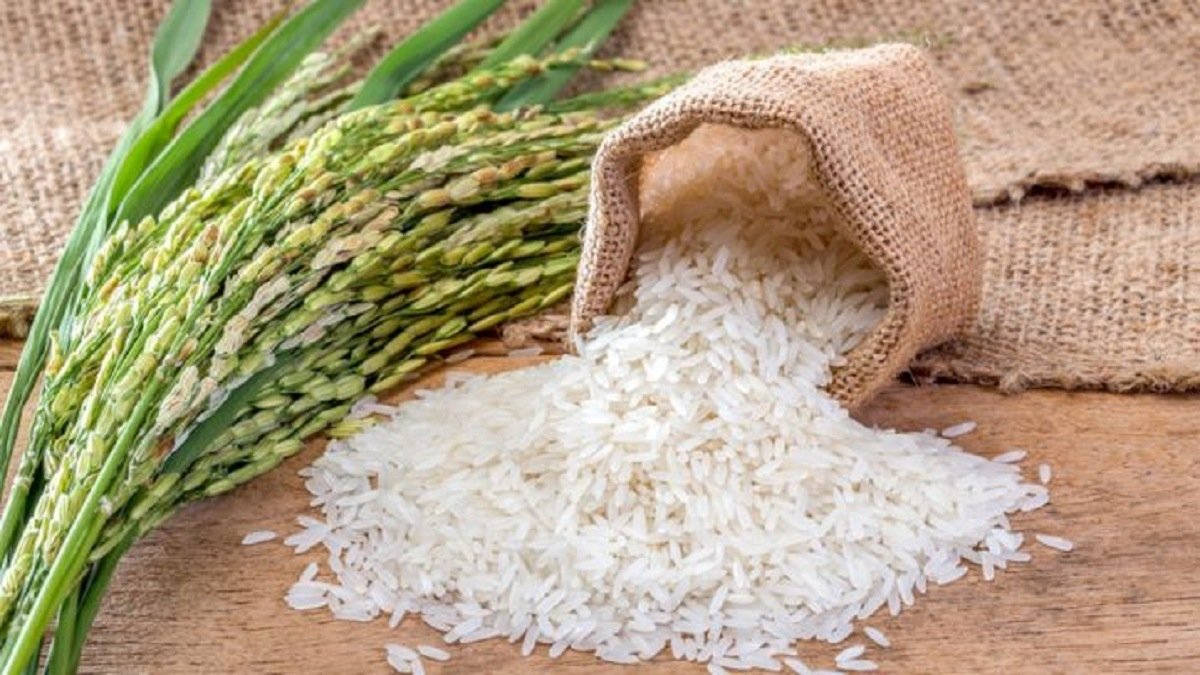
- 21 Mar 2024
Why is it in the News?
Even as basmati rice exports from the country are poised to scale a new high, scientists at the Indian Agricultural Research Institute (IARI) have red-flagged the “illegal” cultivation of its blockbuster varieties in Pakistan.
Unauthorized Cultivation and Export of Pusa Basmati Rice Varieties in Pakistan:
- Despite being officially registered and protected Indian varieties, several IARI-bred Basmati rice varieties, such as Pusa Basmati 1121, Pusa Basmati-6, and Pusa Basmati 1509, are being illegally cultivated and marketed in Pakistan.
- Recent YouTube videos even feature newer IARI varieties like Pusa Basmati-1847, PB-1885, and PB-1886, released in late 2021.
- Pakistan's unauthorized Basmati exports have been substantial, with 7.58 lt ($694.55 million) in 2021-22 and 5.95 lt ($650.42 million) in 2022-23 (July-June).
- This growth is partly due to the depreciation of the Pakistani rupee, allowing the country to offer lower export prices than India.
- The proliferation of these protected varieties in Pakistan can be attributed to the ease of seed multiplication.
- With just a small quantity of seeds, large-scale cultivation can be established within two years of the variety's release in India.
- This unauthorized cultivation not only undermines India's intellectual property rights but also impacts the competitiveness of India's Basmati rice exports in the global market.
What is the Basmati Crop Improvement Program?
- The Basmati Crop Improvement Program focuses on refining the unique qualities of Basmati rice, such as its distinct grain characteristics, cooking properties, and pleasing aroma.
- IARI has played a crucial role in the genetic enhancement, leading to the development of high-yielding, semi-dwarf, and photo-insensitive Basmati varieties like Pusa Basmati 1.
- These improvements have significantly reduced the crop duration from 160 to 120 days and increased productivity from 2.5 to 6-8 tons per hectare.
- As a result, these advanced Basmati varieties account for approximately 90% of India's projected $5.5 billion exports in 2023-24.
- This achievement contributes to substantial foreign exchange earnings and economic growth for the country.
Key Features of IARI-Developed Basmati Rice Varieties:
- IARI has cultivated various Basmati rice varieties with distinct characteristics, including:
- Pusa Basmati 1121: Known as the world's longest Basmati rice, it matures in 145 days with an average yield of 45 q/ha.
- Pusa Basmati 1509: Derived from Pusa 1121 x Pusa 1301, this variety addresses Pusa Basmati 1121's weaknesses, matures in 115 days, and yields 5 tons/ha.
- Improved Pusa Basmati 1 (Pusa 1460): This variety, the first product of molecular breeding in Indian rice, is an enhanced Pusa Basmati 1 with bacterial leaf blight resistance.
- Pusa Basmati 6 (Pusa 1401): Offering superior grain quality, this variety improves upon Pusa 1121's yielding ability, agronomy, and cooking quality.
- Pusa RH10: The world's first superfine grain aromatic rice hybrid, it was released in 2001 for commercial cultivation in specific irrigated ecosystems.
Registration and Cultivation Areas of Pusa Basmati Rice in India:
- All Pusa Basmati rice varieties are officially recognized under the Seeds Act 1966 and can be cultivated within the designated Geographical Indication (GI) area of Basmati rice in India, encompassing seven northern states.
- These varieties are further registered under the Protection of Plant Varieties and Farmers' Rights Act 2001, which permits only Indian farmers to sow, save, re-sow, exchange, or share the seeds of protected/registered varieties.
Six Heritage Sites on Tentative UNESCO List
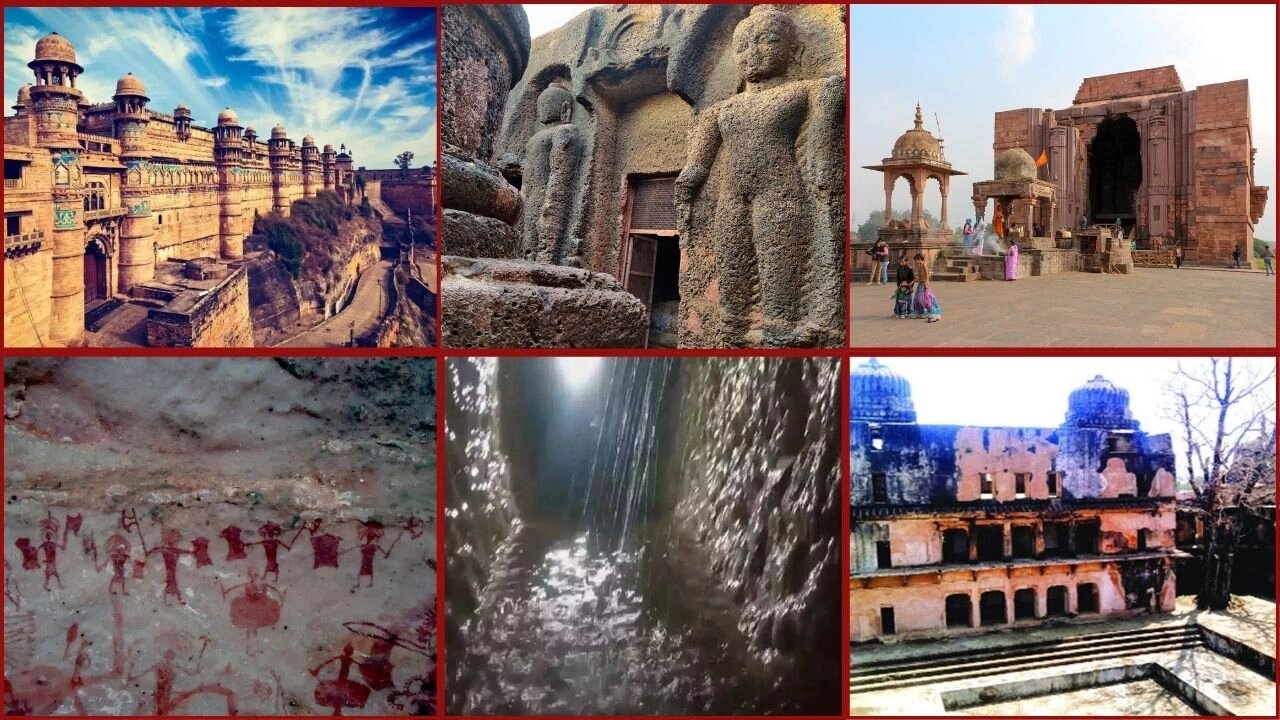
- 20 Mar 2024
Why is it in the News?
In a significant boost to its rich cultural and historical legacy, 6 new sites from Madhya Pradesh have found a place in the tentative UNESCO list of World Heritage Sites (WHS).
Six New Sites From MP In the UNESCO Tentative List:
- The sites included in the tentative list are Gwalior Fort, the Historical Group of Dhamnar, Bhojeshwar Mahadev Temple, Rock Art Sites of Chambal Valley, Khooni Bhandara, Burhanpur, and God Memorial of Ramnagar, Mandla.
- The UNESCO tentative list includes those that provide a forecast of the properties that a State Party may decide to submit for inscription in the next five to ten years.
- Gwalior Fort: An imposing fortress atop a hill, featuring impenetrable walls, exquisite sculptures, and stunning architecture.
- Built-in the 6th century AD by Rajput warrior Suraj Sen and expanded by Tomar ruler Maan Singh in 1398.
- Dhamnar Caves: Rock-cut temple site in Mandsaur district, constructed in the 7th century AD.
- It comprises 51 caves, stupas, chaityas, and dwellings, with a colossal Gautam Buddha statue.
- Bhojeshwar Mahadev Temple: Located near Bhopal, this temple is dedicated to Lord Shiva, with a huge Linga carved from a single stone.
- Built between 1010 and 1053 AD by Raja Bhoj but was never completed.
- Chambal Valley Rock Art Sites: The world's largest concentration of rock art sites across MP, Rajasthan, and Uttar Pradesh, depicting ancient daily life, rituals, and hunting scenes.
- Khooni Bhandara: A unique water supply system built in Burhanpur in 1615 by ruler Abdurrahim Khankhana, still operational today.
- Gond Statue, Mandla: Moti Mahal, a five-storied palace built in Mandla in 1667 by Gond king Hriday Shah, showcasing the strong willpower of the king despite limited resources.
What is UNESCO’s Tentative List?
- A World Heritage Site is a site with outstanding universal value.
- It also denotes cultural and natural significance that transcends national boundaries and is of common importance for current and future generations of all humanity.
- According to UNESCO, a tentative list lists the properties each State Party intends to consider for nomination.
- The government of any nation must have a nomination document ready for the UNESCO World Heritage Committee to review once as soon as UNESCO includes it in a location on the Tentative List.
- After this, a UNESCO representative will evaluate the situation and inspect it.
What is the Tentative List Process?
- The States Parties are encouraged to submit their Tentative Lists of properties that they consider cultural and natural heritage of outstanding universal value and, therefore, suitable for inscription on the World Heritage List.
- The States Parties are encouraged to prepare their Tentative Lists with the participation of stakeholders such as site managers, local and regional governments, local communities, NGOs, and other interested parties and partners.
- The States Parties should submit the Tentative Lists to the World Heritage Centre at least one year before submitting any nomination.
- The list should not be exhaustive.
- The States Parties can re-examine and re-submit their list at least every ten years.
- The States Parties are also requested to submit their lists using a submission format (English or French) that should contain the name of the properties, geographical location, a brief description of the properties, and why the property is of outstanding universal value.
- Nomination will only be considered once the property is added to the State Party's Tentative List.
State of Global Climate Report 2023
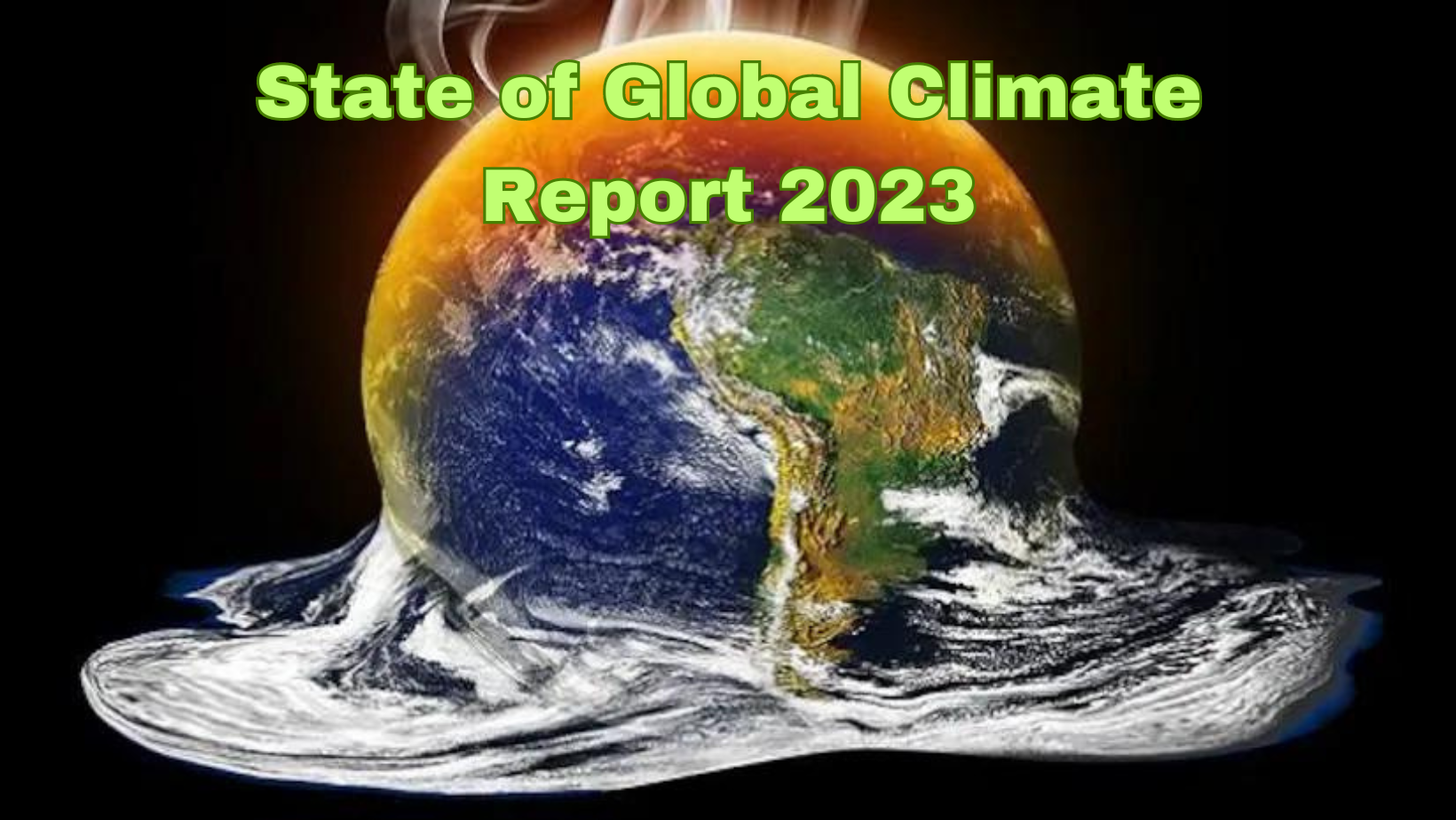
- 20 Mar 2024
Why is it in the News?
In line with a host of observations by climate agencies in the preceding three months, the World Meteorological Organisation (WMO) has officially confirmed 2023 to be the hottest year on record.
About the State of Global Climate Report 2023:
- Published annually by the World Meteorological Organization (WMO), the State of Global Climate Report provides a detailed analysis of the Earth's climate system.
- Contributors to the report include various UN organizations, National Meteorological and Hydrological Services, Global Data and Analysis Centers, Regional Climate Centres, the World Climate Research Programme (WCRP), and more.
Highlights of the 2023 Report:
- Record-Breaking Global Temperatures: 2023 was the hottest year on record, with a global average near-surface temperature of 1.45°Celsius (±0.12°C) above the pre-industrial baseline.
- The past ten years were also the warmest decade recorded.
- Extensive Marine Heatwaves: Nearly one-third of the global ocean experienced a marine heatwave on an average day in 2023.
- Over 90% of the ocean had faced heatwave conditions at some point during the year, negatively impacting ecosystems and food systems.
- Unprecedented Glacier Ice Loss: Preliminary data reveals the largest loss of ice since 1950 for the global set of reference glaciers, driven by extreme melt in western North America and Europe.
- Surge in Renewable Energy Capacity: Renewable capacity additions in 2023 increased by almost 50% from 2022, totaling 510 gigawatts (GW) and marking the highest rate in the past two decades.
- These findings emphasize the pressing need to address climate change through effective international cooperation, policymaking, and sustainable practices.
About the World Meteorological Organisation (WMO):
- The World Meteorological Organization (WMO) is a specialized agency of the United Nations that fosters international cooperation in atmospheric science, climatology, hydrology, and geophysics.
- Founded in 1950, WMO originated from the International Meteorological Organization established in 1873 to facilitate the exchange of weather data and research.
- Today, WMO comprises 193 member countries and territories and promotes the free exchange of meteorological and hydrological data, information, and research.
- By collaborating with various partners, WMO contributes to environmental protection, climate change mitigation, and sustainable development efforts worldwide.
- Headquarters: Geneva, Switzerland.
Haemodialysis
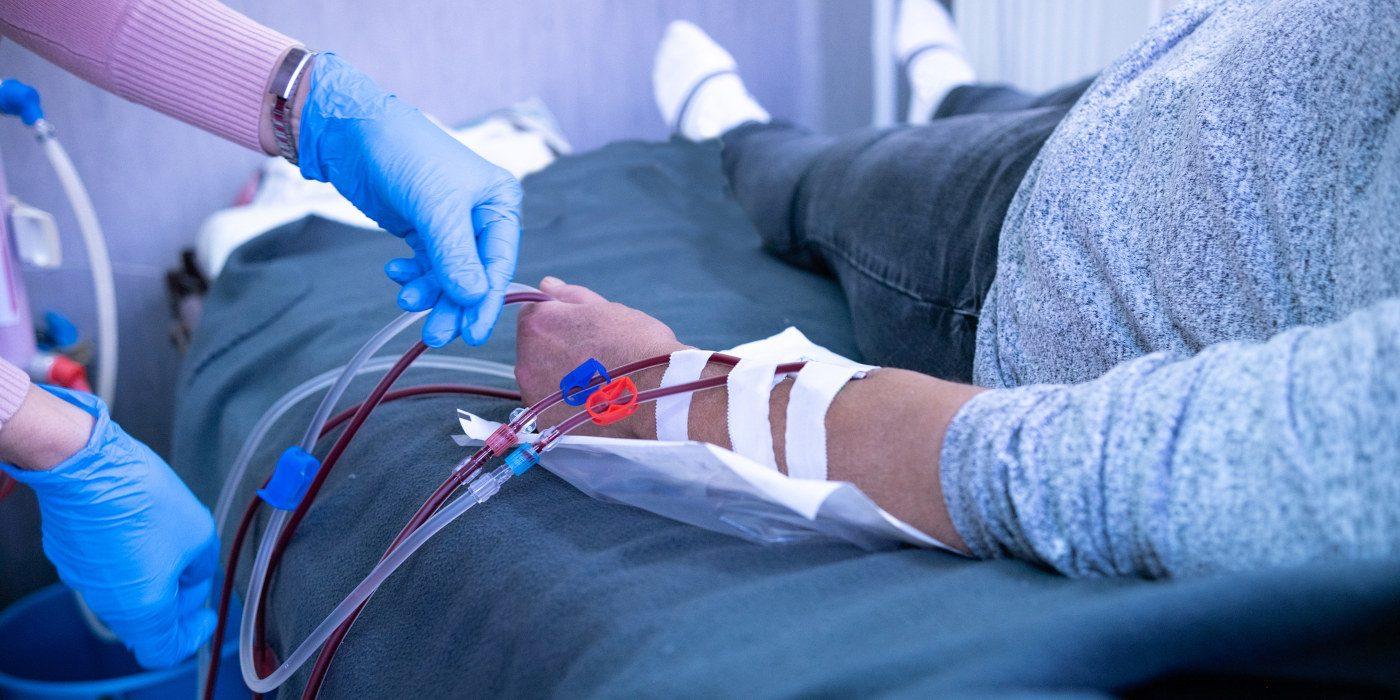
- 19 Mar 2024
Why is it in the News?
Findings from a nationwide private hemodialysis network show that there is a variation in the survival of patients receiving hemodialysis in India depending on various factors, and stress on the need to standardize dialysis care across centers.
What is Hemodialysis?
- Haemodialysis, also known as dialysis, is a medical procedure that helps individuals with kidney failure by removing waste products and excess fluid from their blood.
- This procedure essentially performs the functions of the kidneys, which are responsible for filtering waste and maintaining the body's electrolyte balance.
Key points about hemodialysis:
- Process: During hemodialysis, a patient's blood is circulated through a machine with a semipermeable membrane, called a dialyzer or an artificial kidney.
- The dialyzer filters out waste products, such as urea and creatinine, and excess fluid from the blood, which is then discarded, while essential components are returned to the patient's bloodstream.
- Access: To perform hemodialysis, a patient typically requires vascular access, which is a surgically created connection between an artery and a vein, usually in the arm.
- This connection allows for the efficient flow of blood from the patient to the dialysis machine and back.
- Duration: Haemodialysis treatment typically lasts for around 3-5 hours and is performed several times per week, depending on the patient's needs and kidney function.
- Indications: Haemodialysis is prescribed for patients with end-stage kidney failure, also known as end-stage renal disease (ESRD), who need immediate intervention while waiting for a kidney transplant or when a transplant is not a suitable option.
- Side effects: Some common side effects of hemodialysis include low blood pressure, muscle cramps, itching, and fatigue.
- Complications such as infection, access problems, and blood clotting may also occur, but these risks can be minimized with proper medical supervision and management.
- In summary, hemodialysis is a life-sustaining treatment for patients with kidney failure, offering a means to maintain their health and well-being despite the loss of kidney function.
Nilgiris Forest Fire
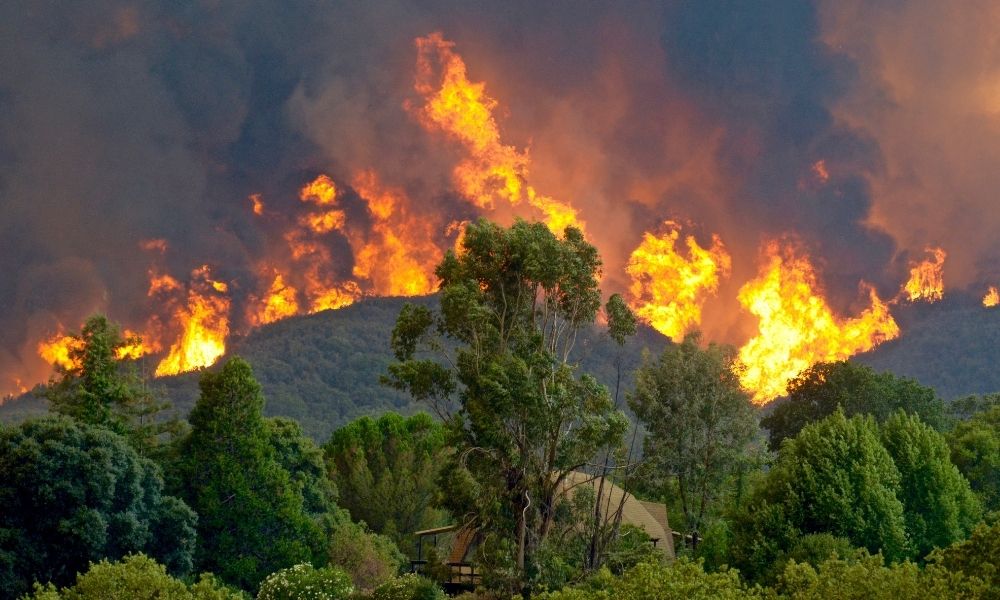
- 19 Mar 2024
Why is it in the News?
The Indian Air Force (IAF) has deployed its assets to aid the local administration in dousing the raging forest fire that started recently in Tamil Nadu's Nilgiris district.
What is a Forest Fire?
- A forest fire, also known as a wildfire, is an uncontrolled fire that occurs in forested areas or other vegetated landscapes.
- These fires can spread rapidly, fueled by dry vegetation, high temperatures, low humidity, and strong winds.
- Once ignited, they can quickly grow in size, consuming vast areas of land, vegetation, and wildlife habitat.
- Wildfires pose significant risks to human safety, property, ecosystems, and air quality.
Causes of Forest Fire:
- Forest fires are caused by Natural causes as well as man-made causes.
- Natural causes: Many forest fires start from natural causes such as lightning which sets trees on fire.
- However, rain extinguishes such fires without causing much damage. High atmospheric temperatures and dryness (low humidity) offer favorable circumstances for a fire to start.
- Man-made causes: Fire is caused when a source of fire like naked flame, cigarette or bidi, electric spark, or any source of ignition comes into contact with inflammable material.
- Natural causes: Many forest fires start from natural causes such as lightning which sets trees on fire.
Types of forest fire:
- Surface Fire: This type of forest fire spreads primarily along the ground, consuming surface litter such as dry leaves, twigs, and grasses.
- The flames engulf the forest floor as they advance.
- Underground Fire: Underground fires, also known as muck fires, burn with low intensity beneath the surface, consuming organic matter and surface litter.
- These fires often spread slowly and can continue burning for months, destroying vegetative cover.
- Ground Fire: Ground fires occur in sub-surface organic fuels such as duff layers under forest stands or organic soils of swamps.
- They burn herbaceous growth and organic matter beneath the surface, often transitioning from smoldering underground fires.
- Crown Fire: Crown fires involve the burning of the crowns of trees and shrubs, sustained by a surface fire.
- They are particularly hazardous in coniferous forests, where resinous material can fuel intense flames.
Frequency of Forest Fire in India:
- Seasonality: Forest fires in India are prevalent from November to June, with peak activity typically occurring in April and May, encompassing both small-scale and large-scale incidents.
- Vulnerability: The 2019 India State of Forest Report (ISFR) highlighted that over 36% of the country's forest cover is susceptible to frequent fires, with 4% categorized as extremely prone and an additional 6% as highly fire-prone.
- Affected Regions: Dry deciduous forests experience severe fires, with Northeast India, Odisha, Maharashtra, Jharkhand, Chhattisgarh, and Uttarakhand being particularly vulnerable areas.
- Recent Incidents: Notable fire outbreaks occurred in 2021 across Uttarakhand, Himachal Pradesh, Nagaland-Manipur border, Odisha, Madhya Pradesh, and Gujarat, including wildlife sanctuaries.
- In 2023, Goa faced large bushfires under investigation for potential human causes.
- 2024 Trends: Recent reports indicate heightened fire activity in Mizoram, Manipur, Assam, Meghalaya, and Maharashtra, with increased incidents along the Konkan belt, coastal Gujarat, southern Rajasthan, Madhya Pradesh, coastal Odisha, Jharkhand, Andhra Pradesh, Karnataka, and Tamil Nadu.
- Southern India: While Andhra Pradesh and Telangana witness fire incidents, forests in southern India, primarily evergreen or semi-evergreen, are less prone to fires, although Tamil Nadu has experienced recent wildfires.
Reasons Behind This Year's Fires:
- Climate Factors: Dry conditions, high temperatures, clear skies, and light winds have fueled forest fires in southern India.
- Temperature Trends: February 2024 was exceptionally hot, making it the hottest month in southern India since 1901.
- Heat Accumulation: Above-average temperatures over the past months led to a buildup of heat, drying out biomass in forests ahead of the summer season.
- Excess Heat Factor: Western Andhra Pradesh and Karnataka are experiencing higher-than-normal EHF values, increasing the risk of heat waves.
- Mild Aridity: Lack of rain and high temperatures have classified most districts in southern India as mildly arid.
Predictive AI: Its Applications and Advantages

- 18 Mar 2024
Why is it in the News?
Predictive AI is revolutionizing data analysis, decision-making, and industry leadership, offering businesses unprecedented insights and strategic advantages.
What is Predictive Artificial Intelligence (AI)?
- Predictive artificial intelligence (AI) utilizes machine learning techniques to analyze historical data and forecast future events, distinguishing it from traditional AI focused solely on retrospective analysis.
- This cutting-edge technology employs advanced algorithms and machine learning models to sift through extensive datasets, identifying subtle patterns and trends.
- Unlike conventional approaches, Predictive AI doesn't just analyze data; it transforms it into actionable insights, enabling organizations to:
- Anticipate future outcomes,
- Predict market shifts, and
- Make strategic decisions with unprecedented foresight.
- By continuously learning from past data and adapting to changing trends, Predictive AI becomes an invaluable tool, guiding businesses through uncertain landscapes.
How Predictive AI Work?
- Leveraging Big Data: Predictive AI relies on access to extensive datasets, often referred to as "big data," as larger datasets typically lead to more accurate analyses.
- Utilizing Machine Learning (ML): As a subset of AI, ML involves training computer programs to analyze data autonomously, without human intervention.
- In the realm of predictive AI, ML algorithms are applied to vast datasets to extract valuable insights.
- Autonomous Processing: Predictive AI models are capable of autonomously processing massive datasets, eliminating the need for human oversight.
- Pattern Recognition: Through ML techniques, predictive AI learns to recognize patterns within datasets, associating specific data points or occurrences with potential future events.
- By examining numerous factors, predictive AI can identify intricate patterns indicative of recurring events, enabling organizations to anticipate future outcomes effectively.
Difference Between Predictive AI and Generative AI:
- Predictive AI and generative AI both employ machine learning techniques and leverage extensive datasets to generate their outputs.
- However, while predictive AI utilizes machine learning to forecast future outcomes, generative AI employs machine learning to produce original content.
- For instance, a predictive AI model may inform fishermen about impending storms, whereas a generative AI model may craft a fictional narrative depicting various scenarios involving weather and fishing expeditions.
- While both types of AI rely on statistical analysis to discern patterns, their objectives, machine learning methodologies, and applications differ significantly.
Various Applications of Predictive AI:
- Assessing the Impact of Natural Disasters: With the recent eruption of a volcano in Iceland, the potential repercussions on air travel echo concerns from a similar event in 2010, which disrupted flights across Europe.
- Predictive AI leverages data analysis to identify patterns and anticipate the impact of such extreme weather events on air travel. Platforms like Yandex offer interactive maps for real-time monitoring of ash clouds post-eruption.
- Enhancing Oil and Gas Exploration: In the realm of oil and gas exploration, companies possess extensive historical geological data that can inform predictive AI systems.
- By analyzing past drilling successes, these systems can predict optimal locations for new oil wells.
- For instance, Saudi Aramco utilizes its meta-brain generative AI to optimize drilling plans, analyze geological data, and forecast drilling outcomes accurately.
- By analyzing past drilling successes, these systems can predict optimal locations for new oil wells.
- Inventory and Supply chain management: Predictive AI aids in inventory and supply chain management by identifying peak consumer demand periods, facilitating proactive stock adjustments, and optimizing resource allocation to address fluctuations in road congestion and meet increased user demands.
- Marketing campaigns: Just as predictive AI can anticipate user or customer behavior, it can help prognosticate what kinds of content or products prospective customers may be interested in.
- Advancing Medical Research: Predictive AI plays a pivotal role in drug discovery, a cornerstone of contemporary medical research.
- Pharmaceutical companies are increasingly collaborating to leverage predictive AI models for analyzing vast datasets and identifying potential drug candidates. Initiatives like the 'MELLODDY Project', supported by the EU Innovative
- Medicines Initiative and multiple pharmaceutical firms, exemplify this collaborative effort in pooling data and leveraging predictive AI for drug discovery.
Vision for Edible Oil Self-Reliance takes root in the North-East

- 15 Mar 2024
Why is it in the News?
Prime Minister Narendra Modi has reiterated the Government’s commitment to move towards self-sufficiency in edible oils production and harped on the importance of oil palm cultivation in the northeast region.
About the National Mission for Edible Oils - Oil Palm (NMEO-OP):
- The National Mission for Edible Oils - Oil Palm (NMEO-OP) is an initiative launched by the Government of India in August 2021 to significantly enhance oil palm cultivation and crude palm oil production.
- This centrally sponsored scheme prioritizes the North East region and the Andaman and Nicobar Islands, aiming to boost the area and productivity of oilseeds and Oil Palm.
- The targets of NMEO-OP include expanding the oil palm area to 10 lakh hectares by 2025-26, a substantial increase from 3.5 lakh hectares in 2019-20, along with elevating Crude Palm Oil production to 11.20 lakh tonnes by 2025-26 from 0.27 lakh tonnes in 2019-20.
- Furthermore, the mission seeks to enhance consumer awareness to maintain a consumption level of 19.00 kg/person/annum until 2025-26.
- Implementation of NMEO-Oil Palm involves various stakeholders such as the State Departments of Agriculture and Horticulture, Central University, ICAR-Institutions, CDDs, SAUs, KVKs, Central Agencies/Cooperatives, Oil palm processors/ Associations, DD Kisan, AIR, DD, TV channels.
- The salient features of NMEO-OP encompass assistance for planting material, inputs for intercropping up to a gestation period of 4 years, the establishment of seed gardens and nurseries, micro-irrigation, bore well/pump set/water harvesting structure, vermicompost units, solar pumps, harvesting tools, custom hiring center cum harvester groups, farmers and officers training, and replanting of old oil palm gardens, among others.
Oil Palm Production in India:
- Originating in West Africa, Oil Palm (Elaeis guineensis) is a relatively recent crop in India known for its high vegetable oil yield per hectare.
- It yields two main oils, palm oil, and palm kernel oil, utilized in both culinary and industrial applications.
- The primary oil palm-growing states in India include Andhra Pradesh, Telangana, and Kerala, which collectively contribute to 98% of the total production.
- Additionally, Karnataka, Tamil Nadu, Odisha, Gujarat, and Mizoram also have significant areas dedicated to oil palm cultivation.
World Pi Day 2024: International Day Of Mathematics And Worldwide Celebrations

- 14 Mar 2024
Why is it in the News?
Every year, International Day of Mathematics (IDM) is celebrated on March 14 to spread awareness about its role in solving real-world problems.
About International Day of Mathematics:
- Every year, International Day of Mathematics (IDM) is celebrated on March 14 to spread awareness about its role in solving real-world problems.
- The United Nations Educational, Scientific and Cultural Organization (UNESCO) declared the International Day of Mathematics at the 40th General Conference on November 19, 2019.
- This day also sheds light on Mathematics' importance in different areas like climate change, energy, artificial intelligence, and sustainable development.
- International Day of Mathematics coincides with International Pi Day.
- Pi is one of the most widely known mathematical constants and it is rounded to 3.14, which is why it is observed on March 14.
- IDM is an opportunity to educate students about the role and importance of mathematics in improving quality of life.
- It also empowers women and girls to contribute to achieving sustainable development goals for the 2030 agenda.
History:
- The 205th session of UNESCO’s Executive Council adopted the International Day of Mathematics.
- The 40th session of UNESCO's General Conference adopted March 14 as the International Day of Mathematics, which was the first official celebration with the theme 'Mathematics is Everywhere'.
- It is an opportunity to understand the importance of mathematics in daily life promoting mathematics use for the advancement of society.
Significance:
- International Day of Mathematics is celebrated to promote Mathematics in different fields highlighting the role of mathematics in solving the real-life world and addressing social concerns.
- IDM shows the application of mathematics in different fields of life including science, technology, engineering, and economics.
- IDM promotes mathematics at different levels encouraging educators, policymakers, parents and to stress the importance of mathematics and inspire students to pursue careers in STEM fields.
- STEM stands for Science, Technology, Engineering, and Mathematics. It is an opportunity to share research, discoveries, and insights with the general public and demystify the subject to make it more accessible.
- International Day of Mathematics is a global initiative to foster collaboration and exchange ideas across borders, cultures, and disciplines.
- The day aims to promote mathematics and help address global challenges through it.
The theme for International Day of Mathematics 2024:
The theme for International Day of Mathematics 2024 is 'Playing With Math.'
News-sharing service by Prasar Bharati launched, content to be ‘free of copyright’

- 14 Mar 2024
Why is it in the News?
Ahead of the Lok Sabha polls, public broadcaster Prasar Bharati launched a news-wire-like service to offer free content across mediums, which will be free of copyright or credit obligations.
What is PB-SHABD?
- PB-SHABD, an acronym for Prasar Bharti - Shared Audio Visuals for Broadcast and Dissemination, is a comprehensive platform designed to deliver daily news feeds encompassing video, audio, text, photos, and other formats to media subscribers.
- Leveraging the expansive network of Prasar Bharati reporters, correspondents, and stringers, the service offers up-to-the-minute news coverage spanning various regions of the country.
- Functioning as a centralized hub for news content, SHABD serves as a valuable resource for organizations, offering a wide array of news stories across fifty categories in all major Indian languages.
- Furthermore, the shared feeds facilitate tailored storytelling across diverse platforms, catering to the specific needs of newspapers, TV channels, and digital portals.
- In an inaugural gesture, the service is provided free of charge for the initial year, extending invaluable support to smaller media outlets and contributing to enhanced accessibility to news content.
About Prasar Bharti:
- Prasar Bharti functions as the nation's Public Service Broadcaster, operating under the Prasar Bharati Act established in 1997 as a statutory autonomous body.
- Its primary objective is to deliver public broadcasting services aimed at informing and entertaining the public.
- Comprising the former media units of the Ministry of Information and Broadcasting, namely the Doordarshan Television Network and All India Radio, Prasar Bharti plays a vital role in disseminating news and entertainment content.
- Headquartered in New Delhi, Prasar Bharti serves as a cornerstone of India's media landscape, dedicated to fulfilling its mandate of public service broadcasting.
Methane emissions from fossil fuels remain high despite progress, US tops list of emitters: IEA

- 14 Mar 2024
Why is it in the News?
As per the International Energy Agency’s (IEA) Global Methane Tracker 2024, methane emissions from fuel consumption in 2023 approached record levels, nearing their highest point in history.
About the Global Methane Tracker:
- The Global Methane Tracker is an annual publication issued by the International Energy Agency (IEA), presenting the latest data on methane emissions primarily from the energy sector. It integrates recent scientific research, measurement campaigns, and satellite data.
Key Highlights from the Global Methane Tracker 2024:
- Methane emissions from fuel usage in 2023 approached record levels, reaching approximately 120 million tonnes (Mt), marking a slight increase from the previous year.
- Bioenergy, derived from plant and animal waste, contributed an additional 10 million tons of emissions.
- Out of the total methane emissions, around 80 million tons originated from ten countries, with the United States and Russia leading in emissions from oil and gas operations, and China leading in emissions from coal operations.
- Despite indications of declining emissions in certain regions, the overall methane emissions remain alarmingly high, posing a significant challenge to achieving global climate objectives.
- To align with the Paris Agreement goal of limiting warming to 1.5°C, there is a critical need to reduce methane emissions from fossil fuels by 75 percent by 2030.
- Achieving this target would require an estimated investment of approximately $170 billion, representing less than 5 percent of the revenue generated by the fossil fuel industry in 2023.
About the International Energy Agency (IEA):
- The International Energy Agency is an intergovernmental organization headquartered in Paris, established in 1974.
- Its primary mandate is to ensure stability in the international oil supply, a response to the oil crisis of 1973, which led to temporary disruptions in the global oil supply chain.
- Operational Framework: The IEA functions within the broader scope of the Organization for Economic Co-Operation and Development (OECD).
- Membership: As of 2022, the IEA comprises 31 member nations, with India joining as an associate member in 2017.
- Key Requirement: Member countries are obligated to maintain reserves equivalent to 90 days of the previous year's net oil imports.
- These reserves must be readily accessible by the government to address potential disruptions in the global oil supply chain, even if the reserves are not owned directly by the government.
NITI Aayog launches 'vocal for local' initiative to promote grassroots-level entrepreneurship
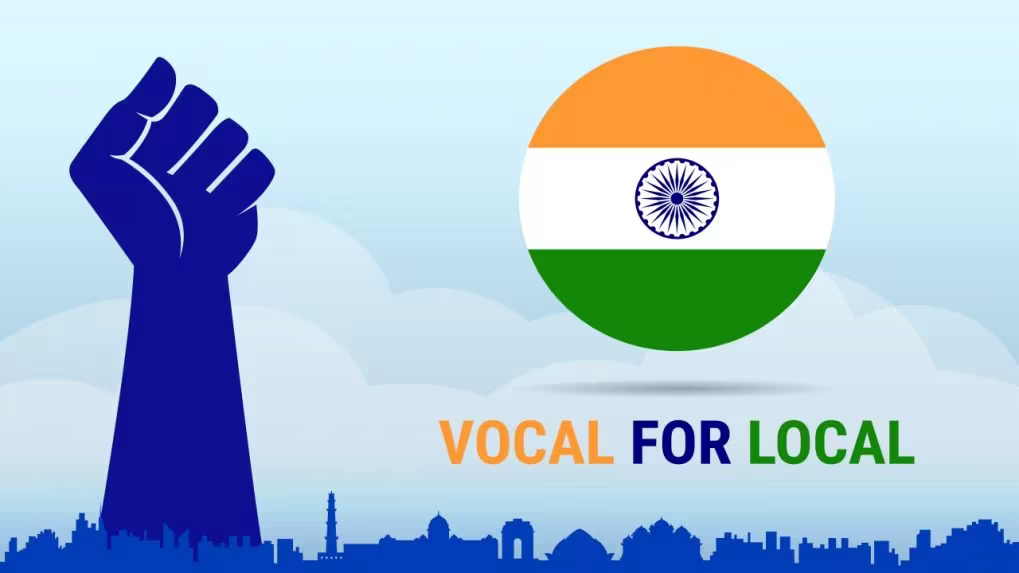
- 14 Mar 2024
Why is it in the News?
NITI Aayog on Wednesday launched the 'Vocal for Local' initiative under its Aspirational Blocks Programme to bolster local economies and foster grassroots-level entrepreneurship, an official statement said.
What is the ‘Vocal for Local’ Initiative?
- The 'Vocal for Local' initiative, led by NITI Aayog through its Aspirational Blocks Programme, aims to foster self-reliance and sustainable development.
- Under this initiative, products from 500 aspirational blocks have been curated and unified under the Aakanksha brand.
- Aakanksha is an overarching brand, with potential extensions into various sub-brands to tap into global markets.
- A dedicated section has been established on the Government e-Marketplace (GeM) portal under the Aakanksha brand to promote these products.
- Additionally, partners in the initiative offer support in areas such as e-commerce facilitation, establishing market linkages, financial and digital literacy, documentation and certification, and skill enhancement.
About Aspirational Blocks Programme:
- Inspired by the Aspirational District Programme launched in 2018, the Aspirational Blocks Programme extends its reach to 112 districts nationwide.
- This new initiative targets the enhancement of underperforming blocks across various development indicators.
- It aims to foster comprehensive growth in regions requiring additional support.
- Initially encompassing 500 districts across 31 States and Union Territories, the programme focuses on blocks in six key states: Uttar Pradesh (68 blocks), Bihar (61), Madhya Pradesh (42), Jharkhand (34), Odisha (29), and West Bengal (29).
What is the Government e-Marketplace (GeM)?
- Established in 2016 by the Ministry of Commerce and Industry, Government of India, the Government e-Marketplace (GeM) serves as an online platform for public procurement.
- GeM acts as a centralized portal, streamlining the procurement process for common-use Goods & Services required by various Government Departments, Organizations, and PSUs.
- Purchases made through GeM by Government users are mandated by the Ministry of Finance under the General Financial Rules, 2017.
- GeM is operated by GeM SPV (Special Purpose Vehicle), a 100% Government-owned, non-profit company operating under the Ministry of Commerce and Industry.
India world’s top arms importer between 2019-23: SIPRI

- 13 Mar 2024
Why is it in the News?
India was the world’s top arms importer for the period 2019-23 with imports having gone up by 4.7% compared to the period 2014-18, according to the SIPRI.
Highlights from the SIPRI Report 2023:
- The report highlights that India continues as the world’s largest arms importer, maintaining this position despite ongoing efforts to enhance its defense-industrial base, accounting for a significant 9.8% of global arms imports between 2019 and 2023.
- There has been a steady increase in India's arms imports, with a 4.7% rise observed between 2014-18 and 2019-23, attributed in part to emergency procurements prompted by the prolonged military standoff with China.
- The dynamics of arms suppliers are changing, with Russia historically serving as India's primary weapons supplier, still accounting for 36% of its arms imports, although there is a shift towards diversification, with India increasingly turning to Western countries and domestic manufacturers.
- Notably, between 2019-23, Russian deliveries constituted less than half of India's arms imports for the first time since 1960-64.
- Western suppliers like France and the United States are emerging as key players, collectively accounting for 46% of India's arms imports, with significant contracts in progress, such as India's procurement of 31 armed MQ-9B Sky Guardian drones from the US and 26 Rafale-M fighters from France.
- In the global arms trade landscape, India ranks as the top importer, followed by Saudi Arabia, Qatar, Ukraine, Pakistan, Japan, Egypt, Australia, South Korea, and China, while the United States leads among exporters with a 42% share, followed by France and Russia.
- India's role as a major arms customer is underscored by its position as the largest arms customer for France, Russia, and Israel, highlighting its significance in global arms procurement.
- Meanwhile, China remains a dominant supplier to Pakistan, accounting for 61% of its exports, and also exports 11% of its arms to Bangladesh, consolidating its influence in the region.
Challenges Encountered by India in Indigenous Production of Defense Equipment:
- Efforts to promote indigenous defense production, exemplified by initiatives like 'Make in India', have encountered persistent challenges, notably the failure to materialize any projects under the Strategic Partnership (SP) model, which was introduced to foster collaboration between the public and private sectors within the defense industry.
- The SP model, designed to facilitate joint endeavors between government-owned defense entities and private companies, has yet to yield tangible results, necessitating a thorough review of the policy framework.
- Key areas for improvement include a reevaluation of pricing methodologies, ensuring long-term orders to sustain production, and addressing bottlenecks that impede project implementation.
- Furthermore, India's defense sector has seen minimal Foreign Direct Investment (FDI), amounting to only Rs 5,077 crore since the sector was opened to private companies in 2001.
- Despite efforts to liberalize FDI regulations, such as allowing up to 74% through the automatic route and up to 100% through the government route in 2020, investment inflows remain disproportionately low.
About Stockholm International Peace Research Institute (SIPRI):
- The Stockholm International Peace Research Institute (SIPRI) is a renowned independent international institute committed to investigating various aspects of conflict, armaments, arms control, and disarmament.
- Founded in 1966 and headquartered in Stockholm, Sweden, SIPRI consistently ranks among the world's most respected think tanks.
SIPRI's mission is multi-faceted and encompasses the following key objectives:
- Conducting in-depth research and activities related to security, conflict, and peace, with the aim of developing a deeper understanding of the complex factors that influence global stability.
- Providing insightful policy analysis and recommendations to policymakers, international organizations, and civil society actors, helping them make informed decisions and develop strategies to address security challenges.
- Facilitating dialogue and building capacities among various stakeholders, including governments, academia, and non-governmental organizations, to foster cooperation and promote mutual understanding on peace and security issues.
- Promoting transparency and accountability in the field of international security by maintaining comprehensive databases on arms transfers, military expenditure, and other relevant data, which contribute to a more accurate assessment of global security trends.
- By adhering to these core principles and objectives, SIPRI plays a vital role in advancing the global discourse on peace and security, while supporting efforts to mitigate conflict and promote stability worldwide.
India launches revamped scheme to help advance pharma industry's tech capabilities

- 12 Mar 2024
Why is it in the News?
India's Department of Pharmaceuticals recently unveiled the Revamped Pharmaceuticals Technology Upgradation Assistance Scheme (RPTUAS) to help advance the technological capabilities of India's pharmaceutical industry and align it with global standards.
What is the Pharmaceuticals Technology Upgradation Assistance Scheme?
- In an effort to support pharma companies aligned with global quality standards, the Department of Pharmaceuticals (DoP) has announced a revamped Pharmaceuticals Technology Upgradation Assistance (RPTUAS) Scheme.
- It has been incorporated as a sub-scheme under the Scheme - Strengthening of Pharmaceutical Industry (SPI), which was launched in July 2022.
Objective:
- To facilitate Micro, Small and Medium Pharma Enterprises (MSME) of proven track record to upgrade their technology to meet WHO-GMP or Schedule M standards.
Intended Beneficiaries:
- Micro, Small and Medium Enterprises of the pharma sector.
Key Features of the Revised Scheme:
- Broadened Eligibility Criteria: Reflecting a more inclusive approach, eligibility for the PTUAS has been expanded beyond Micro, Small and Medium Enterprises to include any pharmaceutical manufacturing unit with a turnover of less than 500 crores that requires technology and quality upgradation.
- Preference remains for MSMEs, supporting smaller players in achieving high-quality manufacturing standards.
- Flexible Financing Options: The scheme introduces more flexible financing options, emphasizing subsidies on reimbursement basis, over traditional credit-linked approaches.
- Comprehensive Support for Compliance with New Standards: In alignment with revised Schedule-M and WHO- Good Manufacturing Practice (GMP) standards, the scheme now supports a broader range of technological upgrades.
- Eligible activities include improvements such as HVAC systems, water and steam utilities, testing laboratories etc.
- State Government Scheme Integration: The revised scheme allows integration with state government schemes, enabling units to benefit from additional top-up assistance. This collaborative approach aims to maximize support for the pharmaceutical industry in their technology upgradation efforts.
- The new benefit limit is based on turnover of the company. Units with less than Rs 5 crore turnover will get an incentive of 20 percent of investment under eligible activities.
- The units with turnover ranging from Rs 50 crore to less than Rs 250 crore will get an incentive of 15 percent of investment, while for those with turnover ranging from Rs 250 crore to less than Rs 500 crore, it will be 10 percent of investment under eligible expenses.
NHAI to start rolling out satellite-based tolling on national highways soon
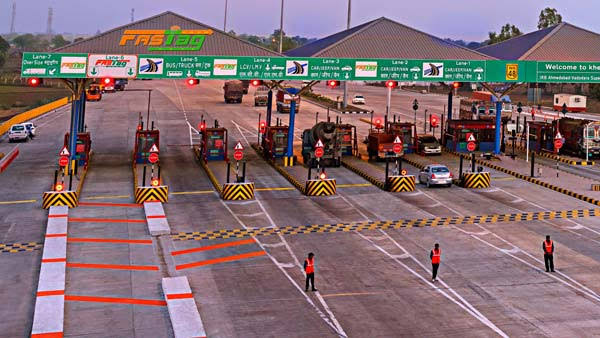
- 11 Mar 2024
Why is it in the News?
Road Transport and Highways Minister Nitin Gadkari said in Parliament in February that the government plans to implement a new highway toll collection system based on the global navigation satellite system before the model code of conduct for the 2024 election kicks in.
What is the Global Navigation Satellite System (GNSS)?
- GNSS refers to a constellation of satellites providing signals from space that transmit positioning and timing data to GNSS receivers.
- The receivers then use this data to determine location.
- Examples of GNSS include Europe’s Galileo, the USA’s GPS, Russia’s GLONASS and China’s BeiDou
How will the GNSS-Based Toll System work?
- The system will use an automatic number plate recognition (ANPR) system through cameras installed on highways and deduct tolls based on the distance traveled by a vehicle.
- The device monitors the movements while driving, accurately marking the entry and exit points on tolled segments. By analyzing travel distance, it computes the charges accordingly.
- This eliminates the uniformity of fixed tolls at booths, ensuring fairness for drivers traversing shorter distances.
Difference between FASTags and ANPR technology:
- FASTags streamline electronic toll payments at toll plazas equipped with scanners, enabling vehicles to pass through without stopping.
- Conversely, GNSS-based systems utilize ANPR technology to deduct tolls based on distance traveled, rendering traditional toll plazas unnecessary.
What are the Challenges?
- Detection of Non-Compliance: Without physical barriers, detecting non-compliant vehicles, such as those without an On-Board Unit (OBU) or engaging in fraudulent activities, poses a challenge.
- Infrastructure Requirements: Deploying gantry-mounted Automatic Number-Plate Recognition (ANPR) systems along highways is essential for capturing violations and enforcing toll payments.
- License Plate Quality: The effectiveness of ANPR systems relies on the quality of license plates; subpar plates hinder accurate recognition and enforcement efforts.
- Data Privacy and Security: GNSS-based toll systems entail collecting and processing sensitive location data, necessitating robust privacy and security measures.
Inflection AI rolls out new large language model to its Pi chatbot
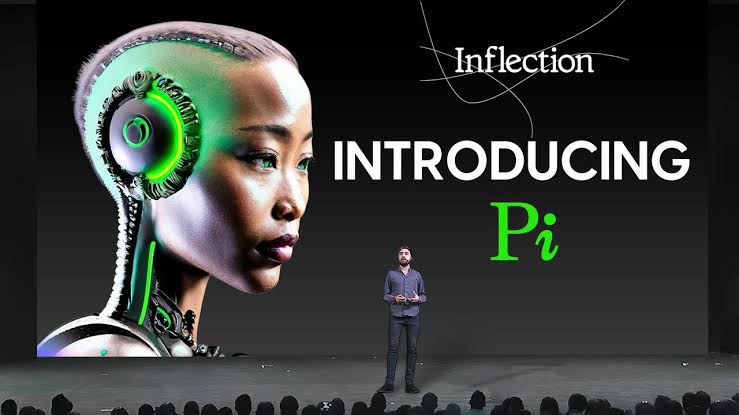
- 11 Mar 2024
Why is it in the News?
Recently, Inflection AI launched its latest LLM, Inflection 2.5, an upgrade to its model that powers its friendly chatbot Pi personal assistant.
About Inflection 2.5:
- Inflection-2.5 is an “upgraded in-house model that is competitive with all the world’s leading LLMs like GPT-4 and Gemini.
- The newly upgraded LLM comes with its signature personality and uniquely empathetic fine-tuning.
- Its latest model achieved GPT-4’s performance with only 40 per cent of the OpenAI model’s computation power for training.
- Besides, it seems Inflection 2.5 has made some stellar strides in areas of IQ such as coding and mathematics.
- This means that the model has made substantial improvements on key benchmarks.
- With the new upgrade, Pi has now been endowed with world-class real-time web search capabilities to ensure that users get access to high-quality and up-to-date information in real-time.
What is the Pi chatbot?
- Pi is an advanced chatbot powered by Inflection AI's cutting-edge language model, Inflection 2.5 which allows one to have deep and meaningful conversations.
- To access the chatbot, one needs to log on to Inflection.AI, click on Meet Pi, and simply start talking to the chatbot right away.
- Pi is more humane and has been promoted as a chatbot that has a personality.
- In other words, Inflection AI dubbed it as a chatbot that is “supportive, smart, and there for you anytime”.
- Pi is more like a companion to humans and is free to use.
- The chatbot comes with a voice, in six distinct voices, to choose from adding life to conversations.
Pi chatbot boasts a number of impressive features that make it stand out from other conversational AI systems:
- Real-time web search capabilities: Pi can access and present up-to-date information on a wide range of topics, ensuring that users always have access to accurate and relevant information.
- Empathetic personality: Pi's unique empathetic fine-tuning allows it to understand and respond to the emotional nuances of human communication, making it a more engaging and personable conversational partner.
- Versatile conversation topics: Whether you're discussing current events, asking for local recommendations, studying for an exam, drafting a business plan, coding, or just talking about hobbies, Pi is equipped to handle a wide range of conversational topics.
- User-friendly interface: Designed with accessibility in mind, Pi's intuitive interface makes it easy for users of all technical abilities to engage with the chatbot and get the most out of their conversations.
Health ministers of 11 African countries commit to end malaria deaths
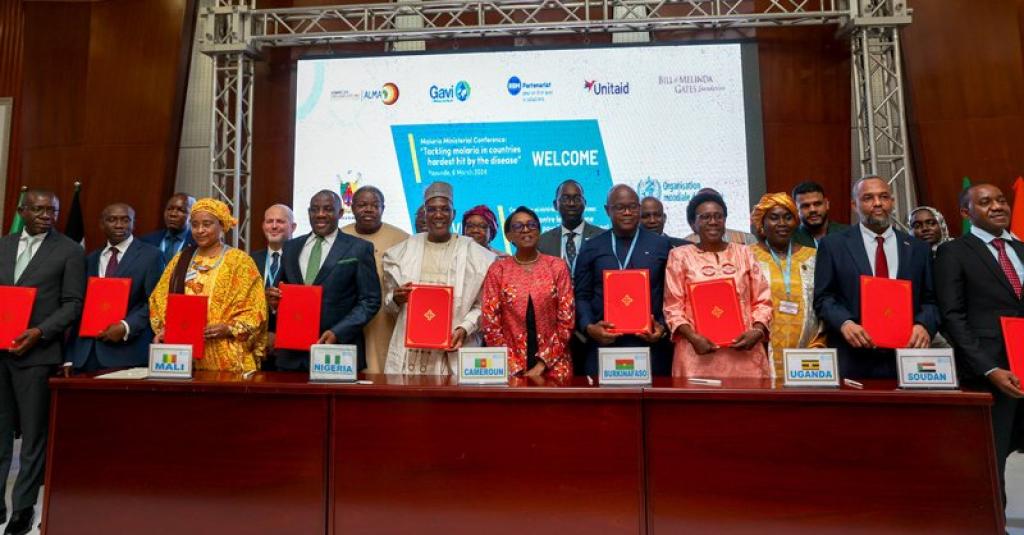
- 11 Mar 2024
Why is it in the News?
In a historic gathering in Cameroon’s capital Yaoundé, African health ministers, global malaria partners, funding agencies, scientists, civil society organizations and other principal malaria stakeholders pledged to end malaria deaths, especially given the tools and systems available.
What is the Yaounde Declaration?
- The Yaounde Declaration was endorsed by health ministers from 11 African nations with the highest malaria burden, aiming to expedite efforts to eliminate malaria-related deaths.
- Signed during the Yaoundé conference, co-hosted by the World Health Organization (WHO) and the Government of Cameroon, the declaration underscores a collective commitment to combat malaria.
- The signatory countries include Burkina Faso, Cameroon, the Democratic Republic of the Congo, Ghana, Mali, Mozambique, Niger, Nigeria, Sudan, Uganda, and Tanzania, together accounting for approximately 70% of the global malaria burden.
- Commitments entail stronger leadership and increased domestic funding for malaria control programs, leveraging data technology, adhering to updated technical guidance, and intensifying efforts at national and sub-national levels.
- Ministers pledged augmented health sector investments to fortify infrastructure, personnel, and program implementation, fostering multi-sectoral collaboration, and cultivating partnerships for funding, research, and innovation.
- Signatories affirmed their resolute dedication to hasten malaria mortality reduction and to ensure mutual accountability for the declaration's outlined commitments.
Current Status of Malaria:
- Between 2019 and 2022, global malaria cases increased from 233 million to 249 million, with Africa experiencing a substantial rise from 218 million to 233 million cases, highlighting the continent as the epicenter of the malaria crisis.
- The 11 African countries represented at the conference bear the highest burden of malaria infections and deaths.
Progress and Challenges:
- Despite some progress, malaria incidence has only declined by 7.6% and mortality by 11.3%, falling short of the African Union’s interim goals.
- Only seven out of 46 member states have achieved a 40% reduction in malaria incidence or mortality.
- Urgent action is imperative to bridge a financial gap of $1.5 billion to sustain basic malaria services, especially for vector control.
- Additional funding of $5.2 billion annually for progress towards elimination and $11 billion for climate adaptation in the health sector is crucial to avert significant surges in cases and deaths, particularly among vulnerable populations like children and pregnant women.
After 10 years struggle, Mendha gets separate Panchayat status under Gramdan Act
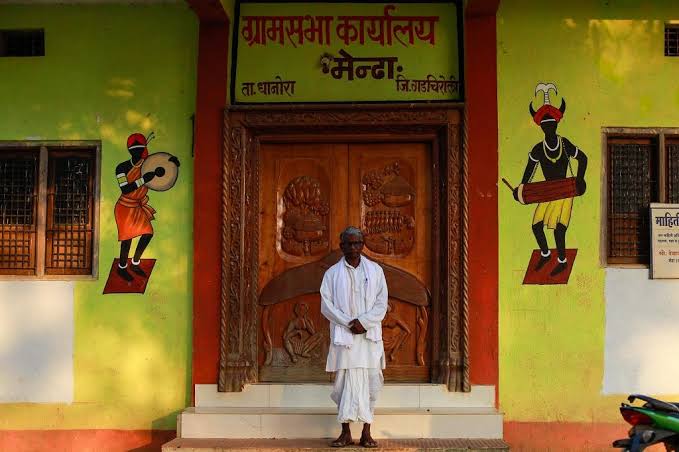
- 08 Mar 2024
Why is it in the News
The Maharashtra government recently notified Mendha, a village deep inside the forests of the state’s Gadchiroli district, as a separate Gram Panchayat under The Maharashtra Gramdan Act, 1964.
What is Gramdan?
- Gramdan is an expansion of the Bhoodan Movement started in 1951 by Aacharya Vinoba Bhave.
- ‘Bhoodan’ meant redistribution of land from bigger landowners to the landless.
- Under Gramdan, the entire village will put its land under a common trust.
- This way, the land will not be sold outside the village or to one who has not joined Gramdan in the village.
- But the landowners can continue to cultivate it and reap the benefits.
- The Movement paved the way for the protection of natural resources by giving equal rights and responsibilities to everyone in the community and empowering communities to move towards self-governance.
- Under the Act, at least 75 percent of landowners in the village should surrender land ownership to the village community for it to be declared as ‘gramdan’.
- Such land should at least be 60 percent of the village land. Five per cent of the surrendered land is distributed to the landless in the village for cultivation.
- Recipients of such land cannot transfer the same without the permission of the community.
- The rest remains with the donors.
- They and their descendants can work on it and reap the benefits.
- But they cannot sell it outside the village or to a village resident who has not joined Gramdan.
- Today, seven states in India have 3,660 Gramdan villages, the highest being in Odisha (1,309).
- The states are Andhra Pradesh, Bihar, Maharashtra, Odisha, Rajasthan, Tamil Nadu and Uttar Pradesh.
- In September 2022, the Assam government repealed the Assam Gramdan Act, 1961 and Assam Bhoodan Act, 1965, bypassing The Assam Land and Revenue Regulation (Amendment) Bill, 2022.
- This, it said, was done to counter encroachment on donated lands in the state.
- Till that time, Assam had 312 Gramdan villages.
About Mendha’s Village Struggle:
- The village, comprising around 500 Gond Adivasis, has fought for its forests for years.
- It is popular as the first village in India to secure community forest rights (CFR), following the passing of the Scheduled Tribes and Other Traditional Forest Dwellers (Recognition of Forest Rights) Act, 2006.
- Some 80 per cent of the area in the village is covered with dense forest.
- People here believe that land is not a private property but a collective resource that provides food and livelihood and should be saved and passed on to the next generation.
- All villagers in Mendha have surrendered their land, which is unique. In all other villages, only about 75-80 per cent of landowners had agreed to do so.
- The village fulfilled these conditions of the Act in 2013 and notified the district collector about its decision to implement the Act.
Amit Shah launches National Cooperative Database, to help in policy making
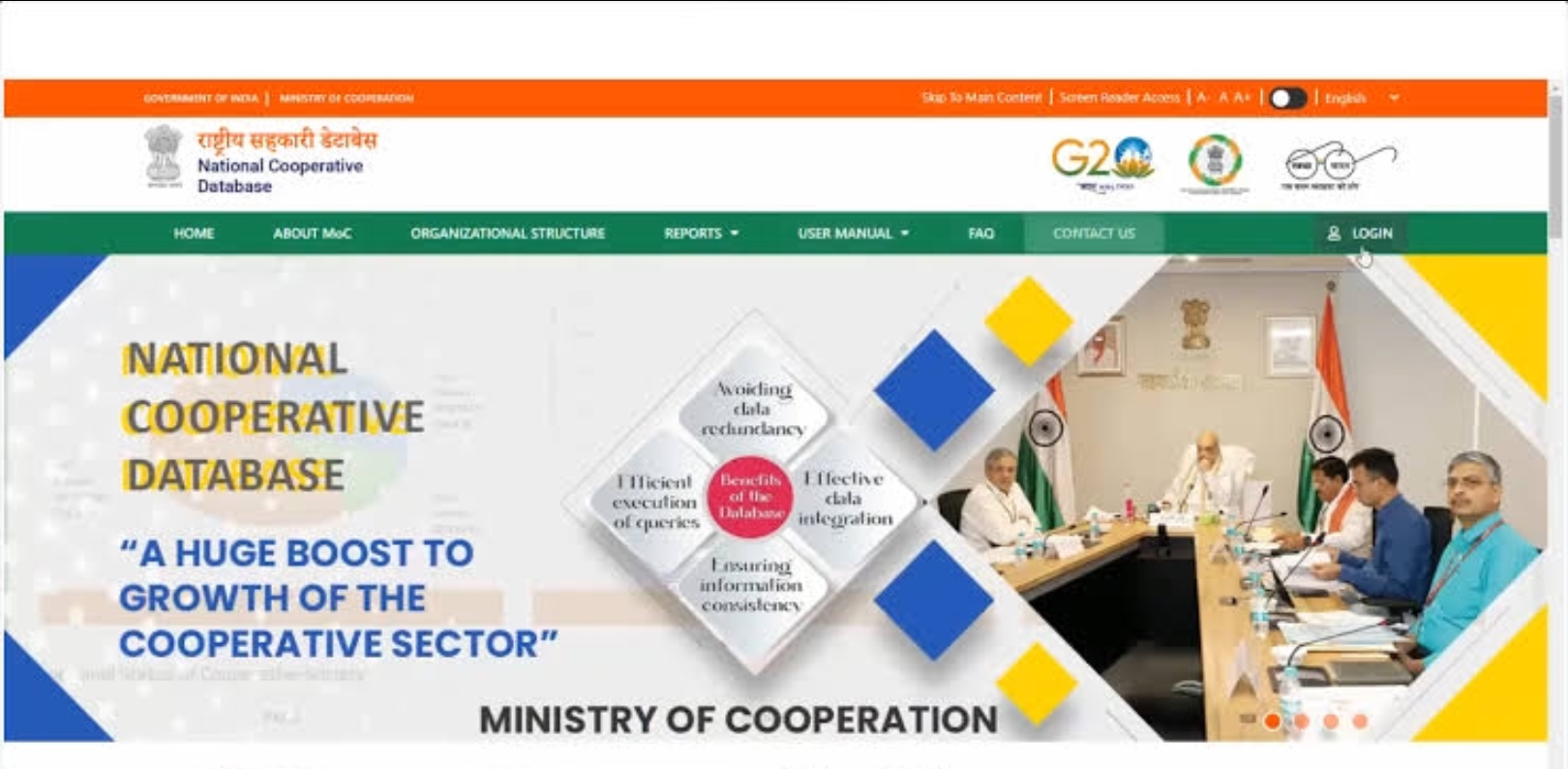
- 08 Mar 2024
Why is it in the News
Cooperation Minister Amit Shah on Friday launched the National Cooperative Database and stressed that it would help in policy making.
About National Cooperative Database (NCD):
- The National Cooperative Database (NCD) is an initiative spearheaded by the Ministry of Cooperation, responding to the pressing need for a robust database to effectively capture essential information concerning India's extensive cooperative sector.
- Developed collaboratively with State Governments, National Federations, and stakeholders, the NCD is designed to promote a cooperative-centric economic model, offering a web-based digital dashboard for seamless data management.
- Acting as a centralized repository, the NCD aggregates data from cooperative societies, including National/State Federations, with information entered and authenticated by nodal officials at RCS/DRCS offices for cooperative societies and provided by various national/state federations for federations.
- The collected data encompasses diverse parameters, such as registered names, locations, membership numbers, sectoral details, operational areas, financial statements, audit statuses, and more, providing a comprehensive overview of the cooperative landscape.
- Serving as a vital communication tool, the NCD facilitates efficient interaction between the Central Ministry, States/UTs, and Cooperative Societies, fostering collaboration and synergy within the cooperative sector.
- Key features and benefits of the NCD include single-point access, comprehensive and updated data, user-friendly interface, vertical and horizontal linkages, query-based reports and graphs, Management Information System (MIS) reports, data analytics, and geographical mapping capabilities.
Countries hope to bring BBNJ or High Seas treaty into force by 2025
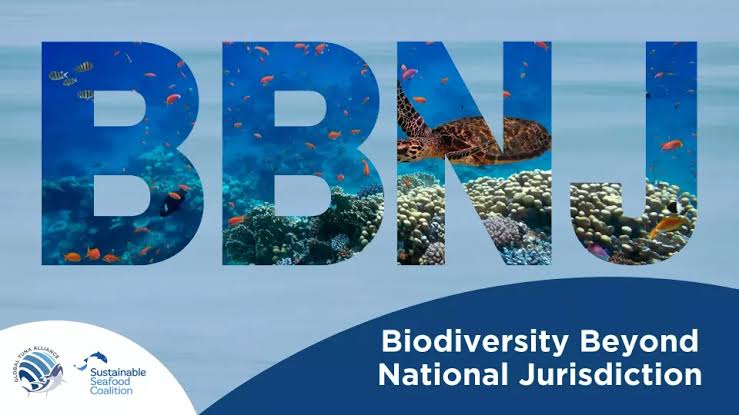
- 08 Mar 2024
Why is it in the News
The Blue Leaders High-Level Event on Biodiversity Beyond National Jurisdiction was held in Belgium on March 7, 2024, to urge nations to ratify a new treaty to protect the high seas from pollution, climate change and overfishing.
What is the BBNJ Treaty?
- The BBNJ Treaty, also referred to as the Treaty of the High Seas, is an international agreement aimed at conserving and sustainably managing marine biological diversity in areas beyond national jurisdiction, operating within the framework of the UNCLOS.
- These areas encompass the high seas beyond exclusive economic zones or national waters.
- It represents nearly half of the Earth's surface and is characterized by minimal regulation and understanding of their biodiversity, with only 1% currently under protection.
- Launched at the One Ocean Summit in February 2022, the High Ambition Coalition on Biodiversity Beyond National Jurisdiction seeks to unite various delegations involved in BBNJ negotiations toward a comprehensive and ambitious outcome.
- The negotiations focus on key elements agreed upon in 2015, including the conservation and sustainable use of marine genetic resources, area-based management tools such as marine protected areas, environmental impact assessments, and initiatives for capacity-building and technology transfer in marine science and management.
- India is yet to sign the treaty. However, it called on efforts for entry into force and implementation of the treaty at the G20 New Delhi Leaders’ Declaration held in September 2023.
The Importance of a Legally Binding Instrument for BBNJ:
- Biodiversity in areas beyond national jurisdiction is crucial for ocean health, coastal communities' welfare, and global sustainability, constituting 95% of the ocean and offering essential ecological, economic, social, cultural, scientific, and food-security benefits.
- Despite their significance, these areas face escalating threats such as pollution, overexploitation, and the impacts of climate change, compounded by the anticipated rise in demand for marine resources in the future.
- Even the deep seafloors, considered one of the most inhospitable habitats, are experiencing the onset of extinction processes, with alarming statistics showing that 62% of assessed mollusc species are threatened, including critically endangered, endangered, and vulnerable species, while the International Seabed Authority permits deep sea mining contracts.
- It is imperative to establish a legally binding framework for managing and regulating biodiversity in areas beyond national jurisdiction, as over 60% of this resource in the global seas remains unmanaged and unprotected, necessitating comprehensive conservation measures.
ISRO’s second rocket launchport in Tamil Nadu’s Kulasekarapattinam
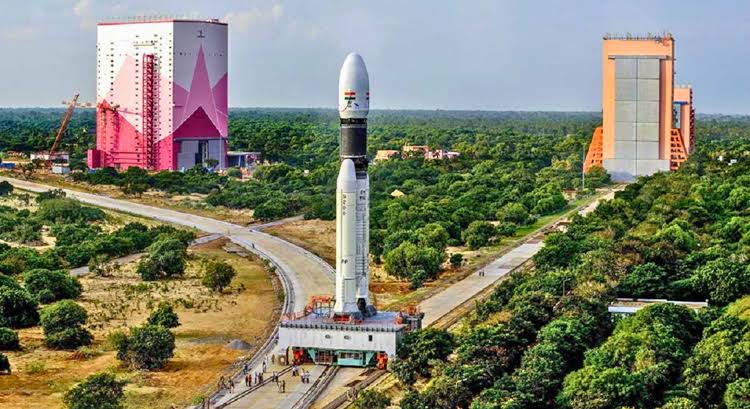
- 07 Mar 2024
Why is it in the News?
Prime Minister Narendra Modi laid the foundation stone of the second rocket launchport of the Indian Space Research Organisation (ISRO) at Kulasekarapattinam on February 28.
Why does India need a new launchport?
- With the Union government’s recent policy announcing the opening of the space sector to private players, a sharp rise in the number of commercial launches is certain.
- To ensure that ISRO’s first launchport, the Satish Dhawan Space Centre (SDSC) SHAR in Sriharikota, is not overburdened with a high number of launches, the space agency has decided to build another facility.
- While SHAR will be only used for launching bigger and heavy-lift-off missions, the Kulasekarapattinam launchport will be used to launch smaller payloads.
- SHAR will also be available for India’s big ticket missions to the Moon, Venus, and much touted human-flight mission, the Gaganyaan.
- Private players could develop space-qualified sub-systems, build satellites, and even launch vehicles using the new launchport.
- It will also facilitate dedicated launch infrastructure for all the on-demand commercial launches.
Why is the new ISRO launchport located in Tamil Nadu?
- Geographically, scientifically, and strategically, the Kulasekarapattinam launchport provides a natural advantage to ISRO’s future launches pertaining to the Small Satellite Launch Vehicle (SSLV).
- Allowing a direct southward and smaller launch trajectory for the light weight SSLVs carrying less fuel, the Kulasekarapattinam facility will boost ISRO’s attempts to enhance payload capacities.
- Currently, the trajectory followed by all launches from SHAR are longer as they follow a path which requires the vehicle to skirt eastwards around Sri Lanka before taking the actual southward flight.
- This consumes additional fuel. However, the same would not be required for future launches from Kulasekarapattinam, which is geographically located several kilometers to the west of Colombo, thereby allowing a straight southward flight and simultaneously saving the already limited fuel available onboard SSLV.
- Notably, both the launch ports are located in Southern India, near the equator.
- For a launch site close to equator the magnitude of the velocity imparted due to Earth’s rotation is about 450 m/s, which can lead to substantial increase in the payload for a given launch vehicle.
- Geostationary satellites must necessarily be in the equatorial plane.
- So, for such satellites, the closer the launch site is to the equator the better it is.
What are SSLVs?
- SSLV is the new small satellite launch vehicle developed by ISRO to cater for the launch of small satellites.
- It has a three-stage launch vehicle, having a lift-off weight of about 120 tonnes and is 34 meters in length and 2 meters in diameter.
- SSLV is designed with a three-stage solid propulsion and a liquid propulsion stage, which is the terminal stage.
- The SSLV missions are useful to launch small-sized satellites weighing anywhere between 10 to 500kg into the Low Earth Orbit.
- Going by their size and weight, these are typically referred to as mini, micro or nano satellites.
- They are low on cost and intended satellite insertion into orbits takes a shorter flight time.
- SSLV are best suited for commercial and on-demand launches.
- Previously, satellite projects built by college students and private players involved in the space sector have benefitted from SSLV missions.
What are the features of SHAR?
- SHAR is situated along the east coast of Andhra Pradesh and is located 80 km off Chennai.
- It currently provides launch infrastructure to all ISRO missions.
- It is equipped with a solid propellant processing setup, static testing, and launch vehicle integration facilities, telemetry services — tracking and command network to oversee the launch — and a mission control center.
- SHAR has two launch complexes that are routinely used to launch the Polar Satellite Launch Vehicle (PSLV), the Geosynchronous Space Launch Vehicles (GSLV) and the Geosynchronous Satellite Launch Vehicle Mk-III, now renamed as LVM3.
Trees in Corbett fell prey to greedy nexus, says Supreme Court
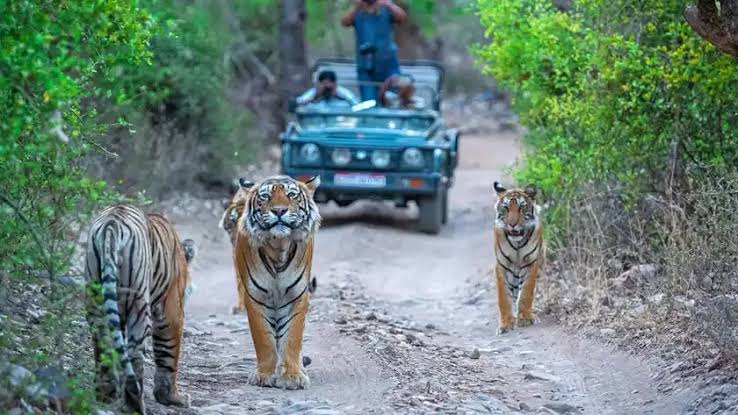
- 07 Mar 2024
Why is it in the News?
The Supreme Court on Wednesday condemned the illegal felling of over 6,000 trees to construct buildings, ostensibly for “eco-tourism” at the Jim Corbett National Park in Uttarakhand, as a “classic case” of nexus between politicians and officials working to ransack the environment for short-term commercial ends.
News Summary:
- In 2023, a series of applications brought attention to the creation of alleged illegal buildings and encroachment on water bodies, prompting court intervention.
- Petitioners highlighted violations of environmental norms and encroachment into core wildlife habitats.
- Evidence presented during proceedings revealed unauthorized constructions within the national park, including concrete and iron enclosures purportedly intended for a 'safari' experience.
- Moreover, it was disclosed that over 6,000 trees had been felled in the national park under the pretext of safari development.
Supreme Court’s Observations:
- The Court has raised concerns regarding the necessity of developing facilities within natural forest environments, particularly in areas designated for the protection of endangered species like tigers.
- Directing the Government to establish a committee, the Supreme Court seeks recommendations on whether tiger safaris should be permitted in buffer or fringe areas and what guidelines should govern their establishment if allowed.
- Additionally, the Court has strongly criticized the illegal constructions and extensive tree felling in Uttarakhand's Corbett National Park.
What are the Core and Buffer Areas in Tiger Reserves?
- As per the Wild Life (Protection) Amendment Act of 2006, a Tiger Reserve comprises core or critical habitat and a buffer zone surrounding it.
- Core areas hold the legal status of a National Park or a Sanctuary.
- Buffer zones consist of a mix of forest and non-forest land, managed as a multiple-use area.
- The buffer area acts as a protective barrier, absorbing the impact of poaching pressure on tiger and other wildlife populations.
About Jim Corbett National Park:
- Location: Situated in the Nainital district of Uttarakhand, Jim Corbett National Park is renowned for its rich biodiversity.
Key Facts:
- Established in 1935, it is India’s oldest national park.
- Initially named Hailey National Park after its founder Sir Malcolm Hailey, it was renamed Corbett National Park in 1956 to honor Jim Corbett's contributions to wildlife preservation in India.
- Corbett National Park boasts the highest population of tigers in India, highlighting its importance for tiger conservation efforts.
- Flora: Dominated by Sal, Semal, Kharpat, Sissoo, Khair, Dhak, Khingan, Bakli, Bel, Ber, Bamboo, Khingam, Jamun, Kanju, Rohini, and Pula trees.
- Sal, Khair, and Sissoo are prominently featured throughout the park.
- Fauna: Home to diverse wildlife including Tiger, Leopard, Elephant, Chital Deer, Sambar Deer, Hogg Deer, Barking Deer, Wild Boar, Langur, Wild pig, Rhesus Monkey, Jackal, Rabbit, Yellow Throated Martin, and Otters.
- Various reptiles such as Crocodile, Gharial, King Cobra, Common Krait, Cobra, Russell's Viper, Rock Python, and Monitor Lizard inhabit the park.
- The Kosi River feeds the eastern periphery of Corbett National Park.
- The Ramganga River (West) and its tributaries Sonanadi, Palain, and Mandal serve as significant hydrological resources for the park.
Vaishnaw bats for further simplification of economic laws at ‘NITI for States’ platform launch
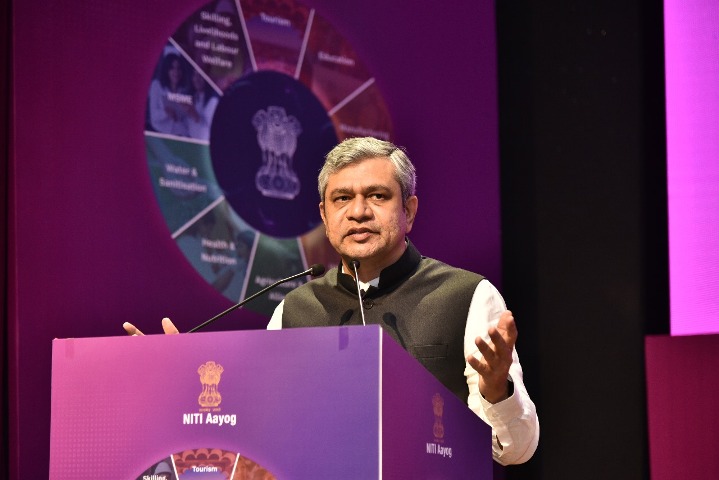
- 07 Mar 2024
Why is it in the News?
The Union IT, Communications, and Railways Minister Ashwini Vaishnaw Thursday stressed on the need to further simplify economic laws in a modern and relevant way at the launch of NITI Aayog’s ‘NITI for States’ platform.
About “NITI For States” Platform:
- It serves as a cross-sectoral knowledge hub envisioned to be a Digital Public Infrastructure (DPI) for Policy and Good Governance.
Key features include:
- A comprehensive repository comprising Best Practices, Policy documents, datasets, data profiles, and NITI publications across various sectors.
- Knowledge products spanning 10 sectors and two cross-cutting themes (Gender and Climate Change), such as Agriculture, Education, Energy, Health, Manufacturing, MSME, Tourism, Urban, and Water resources & WASH.
- An intuitive and user-friendly interface accessible via multiple devices, including mobile phones.
- The platform aims to catalyze digital governance transformation by providing government officials with contextualized, actionable knowledge and insights, thereby enhancing decision-making quality.
- It supports district collectors and block-level functionaries by granting access to innovative best practices from various States and Union Territories.
What is the Viksit Bharat Strategy Room?
- It serves as an interactive platform enabling users to visualize data, trends, best practices, and policies in an immersive manner, facilitating a comprehensive assessment of any problem statement.
- The platform features voice-enabled AI for user interaction and facilitates connectivity with multiple stakeholders through video conferencing.
- Designed as a plug-and-play model, it enables replication by states, districts, and blocks for widespread adoption.
- Collaboration with various government organizations by NITI Aayog includes:
- iGOT Karmayogi's "SAMARTH" online training modules accessible through the platform.
- Integration of NITI Aayog’s National Data and Analytics Platform (NDAP) to provide access to government datasets.
- Support from the National E-Governance Division (NeGD) in developing the innovative Viksit Bharat Strategy Room.
- Multi-lingual support provided by Bhashini.
- Integration of PM Gatishakti BISAG-N team, with DPIIT support, to offer geospatial tools for Area Based Planning.
Exclusive-World on brink of fourth mass coral reef bleaching event- NOAA
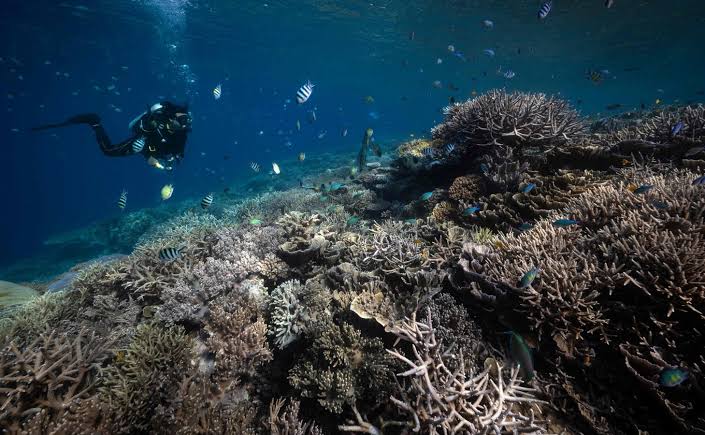
- 06 Mar 2024
Why is it in the News?
The world stands on the brink of witnessing its fourth mass coral bleaching event, a phenomenon that threatens to hit vast expanses of tropical reefs, including significant portions of Australia's iconic Great Barrier Reef.
Key Findings from the National Oceanic and Atmospheric Administration (NOAA):
- Impending Fourth Mass Coral Bleaching Event: The world is on the brink of a fourth mass coral bleaching event, following those in 1998, 2010, and 2014.
- To classify as global, widespread bleaching must occur across three ocean basins: the Atlantic, Pacific, and Indian.
- Impact of Previous Events: The last global mass coral bleaching event occurred from 2014 to 2017, resulting in the loss of nearly a third of the Great Barrier Reef's corals.
- Preliminary data indicates that approximately 15% of the world's reefs experienced significant coral die-offs during this event.
- Current Situation: This year is witnessing even more severe bleaching events, with the Caribbean experiencing its worst coral bleaching on record following the Northern Hemisphere summer last year.
- Link to Climate Phenomena: Coral bleaching is often associated with the naturally occurring El Niño climate phenomenon, which leads to warmer ocean waters.
- Climate Change Impact: The world recently experienced its first 12-month period with an average temperature exceeding 1.5 degrees Celsius (2.7 degrees Fahrenheit) above pre-industrial levels.
- A temperature rise of 1.5°C is considered the tipping point for mass coral die-offs, with scientists estimating that 90% of the world's corals could be lost as a result.
About the Corals and Coral Reefs:
- Corals: Corals are animals known as polyps, which engage in a symbiotic relationship with tiny algae called zooxanthellae.
- These algae provide corals with food and oxygen, while corals offer them a safe habitat.
- Coral Reefs: Coral reefs are limestone structures formed by thousands of tiny coral animals and are predominantly found in tropical climates.
Coral Bleaching and Its Concerns:
- Coral bleaching occurs when corals are exposed to stressful conditions like high temperatures, pollution, or changes in water chemistry, leading them to expel the zooxanthellae.
- Without these algae, corals lose their color and turn white, hence the term 'bleaching,' and cannot survive for long in this state.
- Recovery Potential: Despite its severity, coral bleaching doesn't necessarily mean the end of the reef; timely removal of stressors can facilitate the return of zooxanthellae and coral recovery.
- Ecological Importance: Coral reefs serve as habitats and food sources for numerous fish and marine species.
- They also offer coastal protection from erosion and storms and play a critical role in regulating the Earth's climate by absorbing and storing carbon dioxide.
- Cultural and Aesthetic Value: Beyond their ecological functions, coral reefs represent stunning biodiversity and natural beauty, making their loss a tragic prospect for future generations.
- Impacts: When coral reefs suffer, so do the ecosystems and communities reliant on them, underscoring the far-reaching consequences of coral degradation.
Majuli Island's Mask Craft Celebrated With Geographical Indication Tag
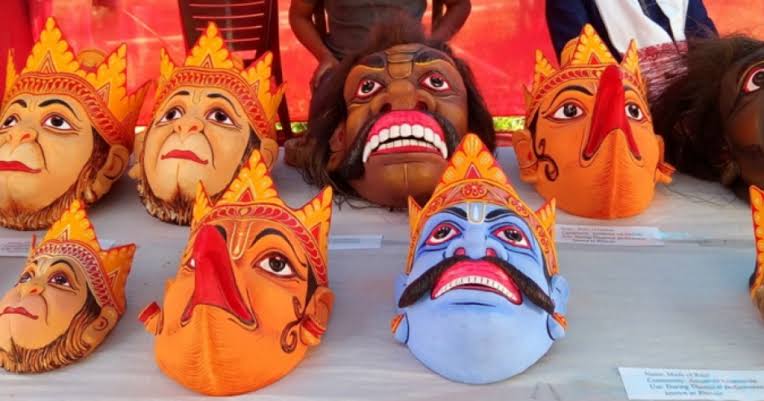
- 06 Mar 2024
Why is it in the News?
Adding to their growing national and international recognition, the traditional Majuli masks in Assam were given a Geographical Indication (GI) tag by the Centre recently.
What are Majuli Masks?
- These handmade masks are traditionally used to depict characters in bhaonas, or theatrical performances with devotional messages under the neo-Vaishnavite tradition.
- Majuli, the largest river island in the world and the seat of Assam’s neo-Vaishnavite tradition, has been home to the art of mask-making since the 16th century.
- It was introduced by the 15th-16th century reformer saint Srimanta Sankardeva.
- The masks can depict gods, goddesses, demons, animals and birds — Ravana, Garuda, Narasimha, Hanuman, Varaha Surpanakha all feature among the masks.
- They can range in size from those covering just the face (mukh mukha), which take around five days to make, to those covering the whole head and body of the performer (cho mukha), which can take up to one-and-a-half months to make.
- According to the application made for the patent, the masks are made of bamboo, clay, dung, cloth, cotton, wood and other materials available in the riverine surroundings of their makers.
Why is This Art Practiced in Monasteries?
- Sattras are monastic institutions established by Srimanta Sankardev and his disciples as centers of religious, social and cultural reform.
- Today, they are also centers of traditional performing arts such as borgeet (songs), sattriya (dance) and bhaona (theater), which are an integral part of the Sankardev tradition.
- Majuli has 22 sattras, and the patent application states that the mask-making tradition is by and large concentrated in four of them:
- Samaguri Sattra
- Natun Samaguri Sattra
- Bihimpur Sattra and
- Alengi Narasimha Sattra
What is Majuli Manuscript Painting?
- It is a form of painting which also received the GI tag.
- It originated in the 16th century done on sanchi pat, or manuscripts made of the bark of the sanchi or agar tree, using homemade ink.
- The earliest example of an illustrated manuscript is said to be a rendering of the Adya Dasama of the Bhagwat Purana in Assamese by Srimanta Sankardev.
- This art was patronized by the Ahom kings.
- It continues to be practiced in every sattra in Majuli.
Grey-zone Warfare Latest Entry in Lexicon of Warfare
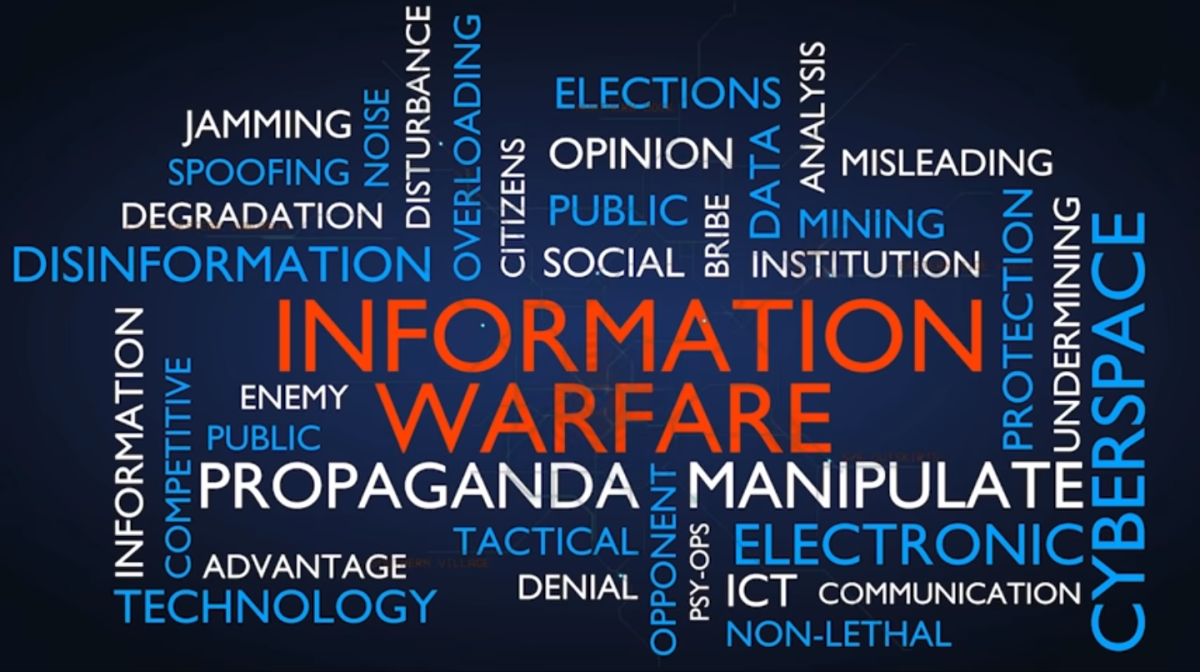
- 04 Mar 2024
Why is it in the News?
On the last day of the 2024 Raisina Dialogue (February 24), India’s Chief of Defence Staff General Anil Chauhan said that “grey zone warfare” is the latest in informal warfare.
What is the Grey Zone Warfare?
- Grey zone warfare refers to a strategic approach where a nation seeks to gain advantages over others without engaging in overt conflict.
- It involves a series of tactics, including cyberattacks, disinformation campaigns, and economic pressures, aimed at subtly undermining or destabilizing adversaries.
- China has notably employed this strategy against India and neighboring countries.
What are the China's Grey Zone Tactics Against India?
- South China Sea Activities: China asserts its dominance in the South China Sea using naval and civilian vessels, raising tensions with neighboring countries like India.
- Infrastructure Near Borders: China constructs infrastructure and settlements near India's borders, bolstering territorial claims and strategic positioning.
- Digital Investments: China invests in Indian digital platforms and media, influencing public narratives and perceptions.
India's Counter-Measures:
- Inter-Agency Collaboration: India promotes collaboration among defense, intelligence, and law enforcement agencies to devise comprehensive strategies to counter grey zone threats.
- Enhanced Vigilance: India increases surveillance and presence in border areas and strategic locations to detect and respond to covert Chinese activities.
- Regulating Foreign Investments: India scrutinizes foreign investments in critical sectors, particularly technology, to safeguard national security interests.
Long-Term Implications for India:
- Information Warfare: Grey zone conflicts often involve digital misinformation, influencing public opinion and perceptions.
- Economic Leverage: Dependency on foreign investments poses vulnerabilities if used as leverage by investing nations.
- Technology Dependency: Heavy reliance on foreign technology exposes India to risks, emphasizing the need to bolster indigenous technological capabilities.
Conclusion
Grey zone warfare encompasses a multifaceted strategic landscape, blending digital, economic, and geopolitical tactics. India recognizes these challenges and is actively devising strategies to navigate this complex terrain.
PM Modi hails those supporting wildlife conservation efforts on World Wildlife Day
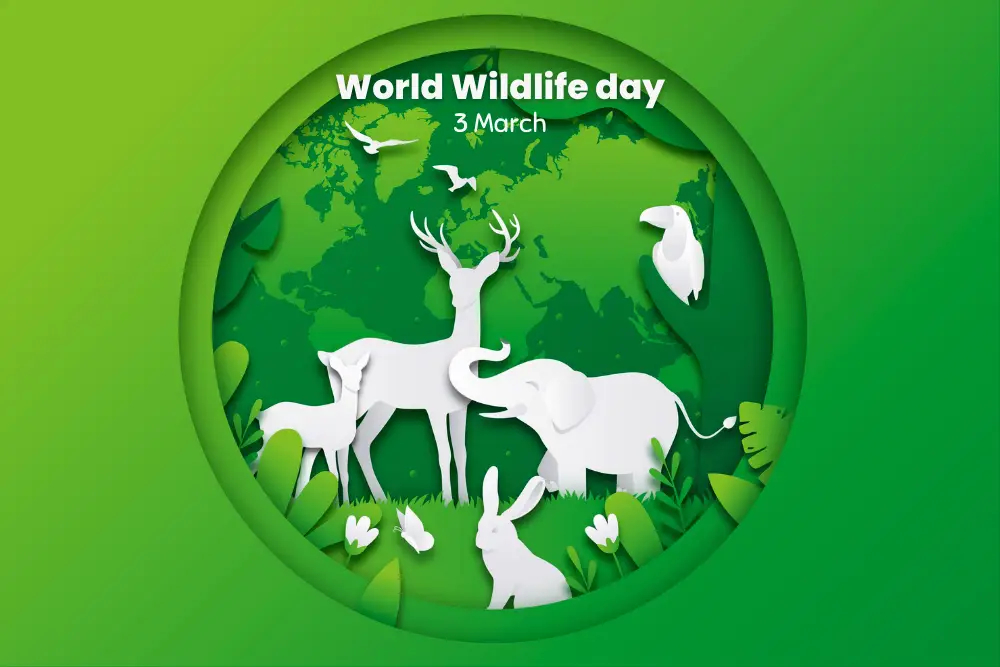
- 04 Mar 2024
Why is it in the News?
On the occasion of World Wildlife Day on March 3, Prime Minister Narendra Modi lauded those at the forefront of sustainable practices and supporting wildlife conservation efforts.
About the World Wildlife Day:
- World Wildlife Day is observed to advocate for sustainable practices that contribute to biodiversity conservation and to enhance public consciousness about the importance of safeguarding and nurturing animals.
- It endeavors to underscore the interconnectedness of all life forms on Earth and to foster harmonious coexistence between humans and animals through activism, advocacy, and education.
Origins:
- Initially proposed by Thailand to the UN General Assembly in 2013, World Wildlife Day aimed to dedicate a day to spotlight the significance of wild animals and plants worldwide.
- On December 20, 2013, the General Assembly adopted a resolution, designating March 3 as World Wildlife Day from 2014 onwards.
- Coinciding with the day, the Convention on International Trade in Endangered Species of Wild Fauna and Flora (CITES) was signed in 1973, emphasizing the importance of safeguarding species from the threats of international trade.
The theme of WWD 2024:
- The theme, "Connecting People and Planet: Exploring Digital Innovation in Wildlife Conservation," underscores the potential of technological advancements to revolutionize conservation efforts.
- In today's digital era, technological breakthroughs offer novel solutions to persistent conservation challenges, making this theme particularly relevant.
Significance:
- World Wildlife Day serves as a vital global awareness platform for animal protection and conservation.
- It reinforces the intrinsic value of animals and advocates for treating them with compassion, integrity, and reverence.
About the Convention on International Trade in Endangered Species of Wild Fauna and Flora (CITES):
- CITES is an international treaty that aims to regulate and monitor the trade of endangered plants and animals, including their parts and derivatives, to ensure their survival in the wild.
- Under CITES, member countries are required to regulate and monitor the trade of endangered species through a system of permits and quotas.
- They must also report regularly on their implementation of the treaty and collaborate with other countries to ensure its effectiveness.
- Currently, CITES has 184 parties.
Supreme Court’s ban on Patanjali ads

- 04 Mar 2024
Why is it in the News?
Recently, the Supreme Court restrained Patanjali Ayurved from discrediting allopathy in its campaigns, and from advertising products that claim to cure chronic conditions.
What is the Magic Remedies Act?
- The Drugs and Magic Remedies (Objectionable Advertisements) Act of 1954 is a legislative framework to control the advertisement of drugs and prohibit claims of magical qualities in remedies.
- The Act encompasses various forms of advertisements, including written, oral, and visual mediums.
What does the Magic Remedies Act entail?
- Under the Act, “drug” refers to medicines intended for human or animal use, substances for diagnosis or treatment of diseases, and articles affecting the body’s functions.
- Other than articles meant for consumption, the definition of “magic remedy” under this Act also extends to talismans, mantras, and charms that allegedly possess miraculous healing powers or influence bodily functions.
Regulations on advertisements under the Magic Remedies Act:
- The Act imposes strict regulations on the publication of advertisements related to drugs.
- It prohibits advertisements that give false impressions, make false claims, or are otherwise misleading.
- The term “advertisement,” under the Act, extends to all notices, labels, wrappers, and oral announcements.
- Violations of these provisions can result in penalties upon conviction, including imprisonment or fines.
Punishment:
- Violating the Act can result in imprisonment, fines, or both.
- If this is the first conviction for the violator, they may face up to six months in prison, fines, or both.
- For a subsequent conviction, imprisonment may extend to one year, a fine, or both.
- The Act does not include any limits for the fines that may be imposed on individuals or organizations.
Who comes under the Magic Remedies Act?
- The Act applies to all individuals and entities involved in the publication of advertisements, including manufacturers, distributors, and advertisers.
- The Act can hold both individuals and companies accountable for contraventions.
Several OPEC+ nations extend oil cuts to boost prices

- 04 Mar 2024
Why is it in the News?
Moscow, Riyadh, and several other OPEC+ members announced extensions to oil production cuts first announced in 2023 as part of an agreement among oil producers to boost prices following economic uncertainty.
What is the OPEC+ Oil Alliance?
- OPEC+ is a coalition of oil-exporting nations that convenes regularly to determine the quantity of crude oil to offer on the global market.
- Origin: This alliance was established in late 2016 to formalize a framework for collaboration between OPEC and non-OPEC oil-producing nations on a consistent and sustainable basis.
- The primary objective of these nations is to collaborate on regulating crude oil production to stabilize the oil market.
- OPEC+ collectively controls approximately 40% of global oil supplies and holds over 80% of proven oil reserves.
- At its core, OPEC+ consists of OPEC member states, predominantly comprising nations from the Middle East and Africa.
- Membership: It includes OPEC member states along with Azerbaijan, Bahrain, Brunei, Kazakhstan, Russia, Mexico, Malaysia, South Sudan, Sudan, and Oman.
About the Organization of the Petroleum Exporting Countries (OPEC):
- OPEC, short for the Organization of the Petroleum Exporting Countries, is a permanent intergovernmental organization comprised of oil-exporting nations.
Mission:
- To coordinate and harmonize the petroleum policies of its member countries.
- To ensure the stability of oil prices in global oil markets, aiming to eliminate detrimental and unnecessary fluctuations.
- Formation: Founded in 1960 by the five original members - Iran, Iraq, Kuwait, Saudi Arabia, and Venezuela.
- Presently, it consists of 13 member countries, which include Algeria, Angola, Congo, Equatorial Guinea, Gabon, Libya, Nigeria, and the United Arab Emirates.
- Headquarters: Located in Vienna, Austria.
India halts Pakistan-bound ship suspected of carrying CNC machines from China
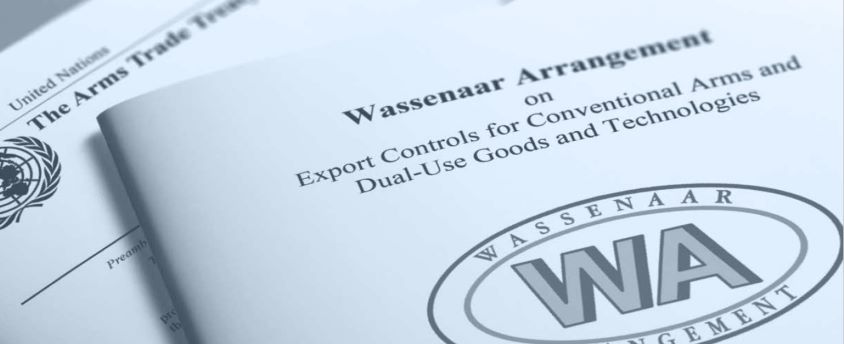
- 04 Mar 2024
Why is it in the News?
Recently, Indian security agencies have intercepted a Pakistan-bound ship from China at Mumbai's Nhava Sheva port.
What are CNC Machines and Wassenaar Arrangements?
- CNC machines are controlled by a computer and offer efficiency, consistency, and accuracy not possible manually.
- These machines have been included in the Wassenaar Arrangement since 1996.
- This international arms control regime aims to stop the proliferation of equipment with both civilian and military uses, with India being among the 42 member countries exchanging information on transfers of conventional weapons and dual-use goods and technologies.
About the Wassenaar Arrangement:
- The Wassenaar Arrangement is a voluntary export control framework established in July 1996.
- Comprising 42 member nations, it facilitates the exchange of information regarding transfers of conventional weaponry and dual-use goods and technologies.
- Dual-use items possess the capacity for both civilian and military applications.
- The arrangement's secretariat is headquartered in Vienna, Austria.
Membership:
- The arrangement boasts 42 member states, predominantly consisting of NATO and EU nations.
- Members are obligated to report arms transfers and dual-use goods and technology transfers or denials to destinations beyond the arrangement biannually.
- India became a member of the Arrangement in 2017.
Objectives:
- Central to its operation is the continual exchange of technology-related information, encompassing both conventional and nuclear-capable technologies, among member states.
- This information exchange involves the maintenance and refinement of comprehensive lists of materials, technologies, processes, and products deemed militarily significant.
- The primary goal is to regulate the movement of technology, materials, or components to entities or nations that could jeopardize global security and stability.
Wassenaar Arrangement Plenary:
- The WA Plenary is the decision-making and governing body of the Arrangement.
- It is composed of representatives of all Participating States who normally meet once a year, usually in December.
- Chairmanship of the Plenary is subject to annual rotation among Participating States.
- In 2018, the United Kingdom held the Plenary Chair, while Greece assumed the position in 2019.
- Decisions within the Plenary are made through consensus.
How India’s first semiconductor fabrication plant can help plug into the global value chain
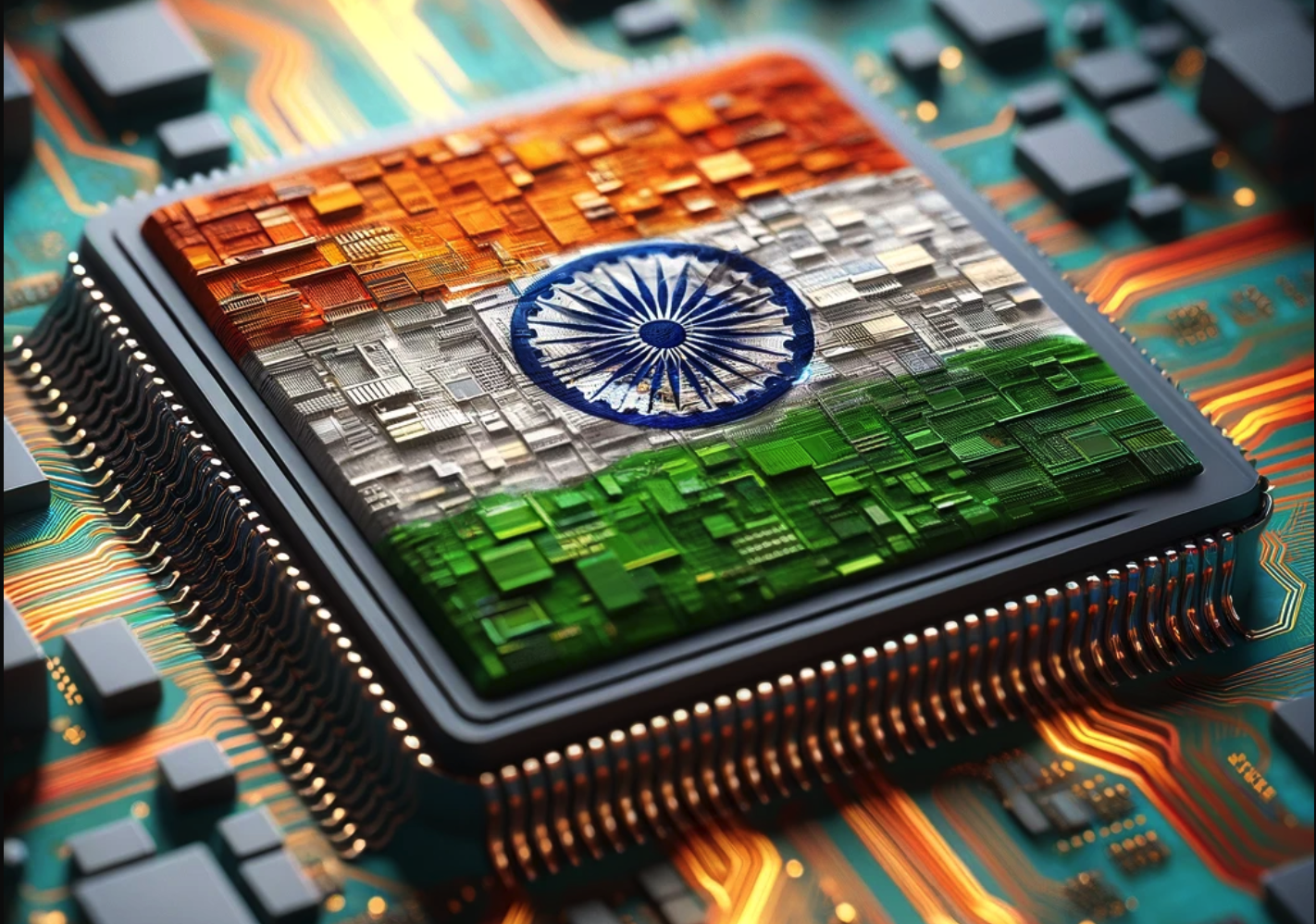
- 02 Mar 2024
Why is it in the News?
The Union Cabinet recently approved the country's first semiconductor fab to be made by the Tata Group in collaboration with Powerchip Taiwan.
What is Semiconductor Fabrication?
- The semiconductor fabrication process is a complex and highly specialized series of steps that transform raw materials into functional electronic components.
- This process involves a multitude of techniques and technologies, with each stage requiring precise control and attention to detail.
- A semiconductor fab -- short for fabrication -- is a manufacturing plant in which raw silicon wafers are turned into integrated circuits (ICs).
- A fab lab features a clean room where ICs are etched onto wafers.
- The completed chips are sent to a back-end assembly and test facility before they are packaged and sold.
- A semiconductor fab facility always includes a clean room -- so known because its environment is carefully controlled to eliminate dust and vibrations and to keep the temperature and humidity within a specific narrow range.
- Contamination can enter the fab environment through external sources, resulting in damage to products that can affect overall yield.
- To minimize the losses, all potential sources of contamination are thoroughly analysed and cleaned.
- For example, the tools used in the chip manufacturing process have low levels of particulates and fibres.
- The goal is to ensure that extraneous contamination is not introduced into the semiconductor fab to ensure the highest quality of the final products.
Technology Used in Semiconductor Fab Labs:
- Photolithography: Photolithography is a crucial optical process in the fabrication process, as it is used to create intricate circuit patterns on a single wafer's surface.
- This is achieved by coating the wafer with a photosensitive material, called a photoresist, and then exposing it to high-wavelength deep ultraviolet (DUV) or extreme ultraviolet (EUV) light through a mask containing the desired pattern.
- The exposed photoresist undergoes a chemical change, which allows it to be selectively removed.
- It leaves behind a patterned layer that serves as a protective layer for subsequent processing steps, such as etching and deposition.
Minimum age to cast postal ballots hiked to 85 years
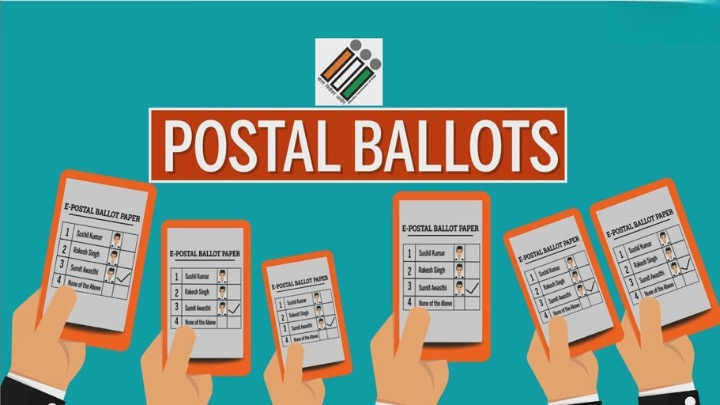
- 02 Mar 2024
Why is it in the News?
For the upcoming Lok Sabha and State Assembly elections, senior citizens who are 85 years and older will be able to opt for postal ballots as the government recently amended the rule to increase the eligibility from the current limit of 80 years and above.
News Summary:
- The government, in collaboration with the Election Commission, has introduced amendments to the Conduct of Election Rules (1961), specifically targeting the eligibility criteria for voting by postal ballot.
- Notably, the minimum age for senior citizens eligible for postal voting has been increased from 80 years to 85 years.
- Previously, Rule 27A of the Conduct of Election Rules had extended the postal ballot facility to senior citizens above 80 years, persons with disabilities, poll officers, and individuals diagnosed with COVID-19.
- This provision was first implemented during the 2020 Bihar assembly polls, coinciding with the onset of the pandemic.
- Despite the initial extension of postal voting rights to senior citizens aged 80 and above, a subsequent review by the Election Commission revealed that only a small fraction, approximately 2-3%, of eligible voters in this age group opted for postal ballots.
- The majority preferred to physically visit polling stations to cast their votes.
- Considering the statistics indicating that the total number of senior citizens above 80 years stands at 1.75 crore, with 98 lakh falling within the age range of 80-85 years, the government deemed it necessary to amend the existing rule.
- This adjustment reflects a nuanced approach aimed at ensuring efficient electoral processes while addressing the preferences and needs of elderly voters.
What is Postal Voting?
- Postal voting is only available to a specific group of voters.
- By retyping her choices on the ballot paper and returning it to the inspection officer before counting, a voter can remotely cast her ballot using this feature.
Who Can Avail This?
- Armed forces members such as those in the Army, Navy, and Air Force, armed police officers serving outside their home states, government workers stationed outside of India, and their wives are only eligible to vote by mail.
Features:
- Voters may use this service from any location outside of the designated constituency.
- This system makes it easier to create voter electoral roll data for services.
- It has two layers of security, making it a secure system:
- 1. Downloading the encrypted electronically transmitted postal ballot (ETPB) file requires an OTP (one-time password).
- 2. To decrypt, print, and deliver ETPB, a PIN is necessary.
- By sending postal ballots electronically to eligible service voters, this system addresses the time constraint associated with mailing postal ballots.
- The specific quick response code ensures confidentiality and prevents the duplication of cast ETPB.
Concerned Raised by Political Parties:
- Parties argue that allowing voters 65 and older to cast postal ballots violates voting confidentiality since many of the population lacks education and may ask for help from others at various points, ultimately identifying their chosen candidate.
- Their exposure to "administrative influence or influence by the government or the ruling party" also results from this.
How the development of Agaléga figures in India’s vision for its maritime neighbourhood
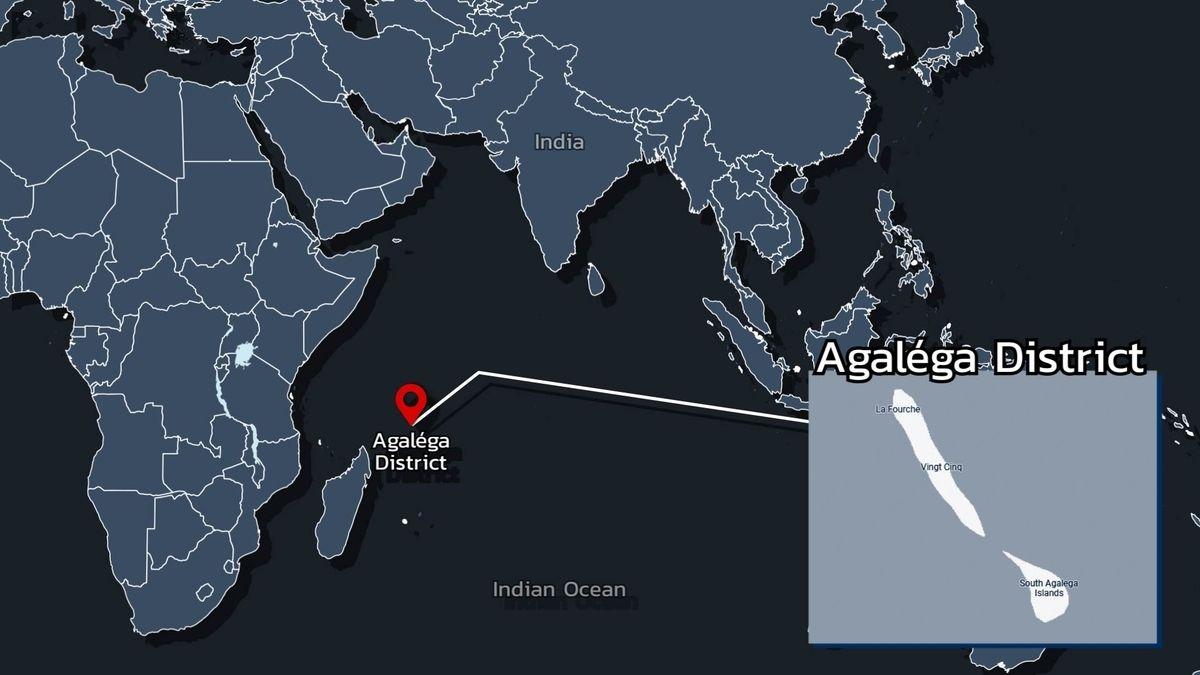
- 02 Mar 2024
Why is it in the News?
Recently, Prime Ministers Narendra Modi and Pravind Jugnauth jointly inaugurated an airstrip and the St James Jetty on North Agaléga Island in the Indian Ocean.
About Agalega Islands:
- Agaléga Island comprises two islets, a long and thin northern island and a shorter, round southern island.
- It is slightly over 3,000 kilometres from the nearest mainland Indian coast, deep in the Indian Ocean near Madagascar.
- Despite its pristine appeal, Agaléga remains largely undiscovered by tourists and there are no hotels, water bungalows, or bustling tourist shops.
- Instead, approximately 300 islanders sustain themselves through coconut cultivation and fishing, maintaining a way of life passed down through generations.
Importance of Agalega Islands:
- The development of the Agalega Islands holds significant socio-economic and national security implications for Mauritius, aligning closely with India's maritime vision.
- Despite being a dependency of Mauritius, the islands have long remained underdeveloped, posing challenges to the sustainability and well-being of their inhabitants.
- Necessities often required referral to Mauritius due to the lack of infrastructure.
- Moreover, the absence of an official government or security presence posed a serious vulnerability, necessitating urgent attention.
- Recognizing the potential to transform this vulnerability into a strategic asset, Mauritius prioritized the development of the islands and the establishment of facilities capable of accommodating ships and aircraft.
- In this regard, the construction of a jetty and an airstrip emerged as imperative steps to bolster the islands' infrastructure.
- Given the shared interests and cooperation between Mauritius and India, the government of Mauritius selected India as its preferred development partner for this ambitious initiative.
Why did Mauritians Choose India?
- Ties between India and Mauritius go back to 1948, 20 years before the country’s independence from Britain.
- Seventy percent of the inhabitants of Mauritius are of Indian origin, and the two countries share deep historical, social, and cultural bonds.
- The consistent feature in the history of bilateral relations has been friendship and trust at all levels — the political leadership, the diplomatic and military communities, as well as between the peoples of the two countries.
- The development of these strategically located islands required trust more than anything else. India was the obvious choice.
Significance for India:
- The goodwill and trust between the two countries will be further enhanced. India will welcome opportunities to further develop these islands in collaboration with Mauritius as the latter deems appropriate.
- The joint development of Agaléga underscores India’s commitment to the vision of Security And Growth for All in the Region (SAGAR), and its willingness to assist smaller maritime nations in building capacity and developing capability.
- It will indicate to other maritime neighbours that India is a benign and friendly country that respects the sovereignty of independent nations.
- India would like to emerge as the preferred development and security partner in the Indian Ocean Region.
PM Modi launches India’s first hydrogen-powered ferry built at Cochin Shipyard
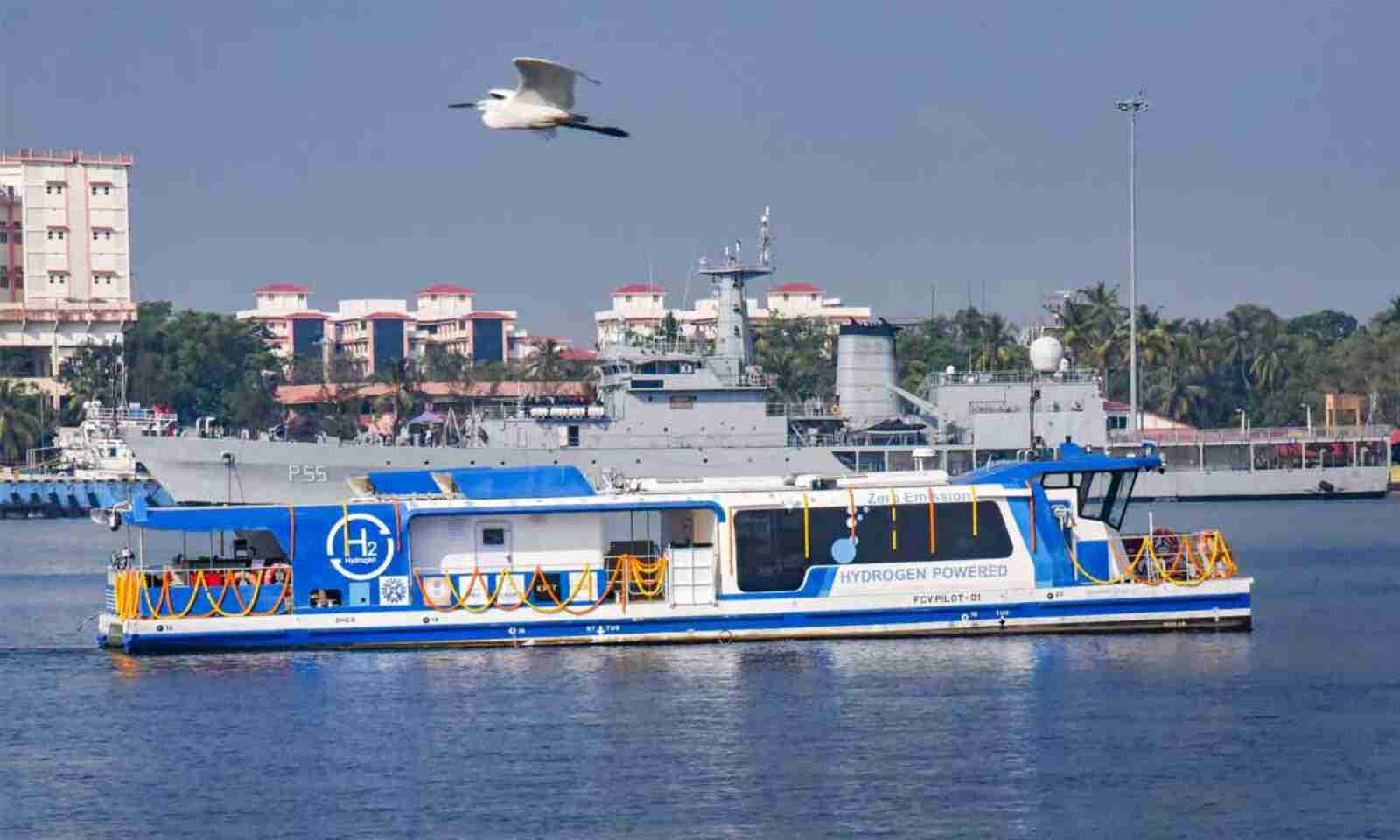
- 01 Mar 2024
Why is it in the News?
Prime Minister Modi recently virtually launched India’s first indigenously developed hydrogen fuel cell ferry manufactured by Cochin Shipyard Limited (CSL), which will be deployed for service at Varanasi in Uttar Pradesh.
What is the "Harit Nauka" (Green Boat) Initiative?
- Initiated by the Ministry of Ports, Shipping, and Waterways, "Harit Nauka" aims to facilitate a sustainable transition of inland vessels.
- In January 2024, the shipping ministry introduced the "Harit Nauka" guidelines, outlining the path towards environmentally friendly practices for inland vessels.
- According to these guidelines, all states are mandated to progressively adopt green fuels for 50% of their inland waterway-based passenger fleets within the next decade, to achieve 100% adoption by 2045. This initiative aligns with the Maritime Amrit Kaal Vision 2047, aimed at reducing greenhouse gas emissions.
- The implementation of this initiative not only contributes to reducing emissions but also paves the way for replicating such environmentally friendly ferry models across the country to enhance urban mobility.
- Furthermore, it serves as a significant catalyst for advancing the objectives of the National Green Hydrogen Mission.
What are Hydrogen Fuel Cells?
- Hydrogen fuel cells harness the chemical energy of hydrogen to generate electricity, offering a clean energy solution with electricity, heat, and water as the sole products and by-products.
Functioning:
- Similar to batteries, fuel cells continuously produce electricity and heat as long as fuel is supplied. A typical fuel cell comprises two electrodes—an anode (negative electrode) and a cathode (positive electrode)—surrounding an electrolyte.
- Hydrogen fuel is supplied to the anode, while air is directed to the cathode. At the anode, a catalyst separates hydrogen molecules into protons and electrons, which then travel different paths.
- Electrons create an electric current through an external circuit, while protons migrate through the electrolyte to the cathode, combining with oxygen and electrons to form water and heat.
Challenges in India:
- High Cost: Fuel cell systems remain relatively expensive compared to conventional energy sources.
- Infrastructure Deficiency: India currently lacks the necessary infrastructure for the widespread adoption of fuel cell technology, including hydrogen production and distribution networks.
- Technical Hurdles: Despite ongoing advancements, fuel cell technology is still in its nascent stages, facing persistent technical challenges.
- Policy Constraints: The absence of a comprehensive policy framework from the Indian government has constrained the development and adoption of fuel cell technology, impeding research and investment.
India's Initiatives:
- In response to these challenges, India has formulated the National Green Hydrogen Policy, delineating a vision for the growth of the hydrogen and fuel cell industry.
- The policy aims to position India as a global hub for the production, utilization, and export of Green Hydrogen and its derivatives, signalling a strategic commitment to advancing sustainable energy solutions.
Characteristics of the Hydrogen-Powered Ferry:
- Length and Capacity: The hydrogen fuel cell vessel is a 24-meter-long catamaran, capable of accommodating up to 50 passengers in its air-conditioned passenger area.
- Battery-Free Operation: Distinguished by its innovative design, this ferry does not rely on conventional batteries for storing electrical energy.
- Instead, it utilizes hydrogen fuel, stored in cylinders onboard the vessel. With five hydrogen cylinders capable of carrying 40kg of hydrogen, the ferry can sustain operations for eight hours. Additionally, it features a 3-kW solar panel to complement its power source.
- Fuel Cell Technology: Equipped with a 50-kW PEM (proton-exchange membrane) fuel cell, coupled with Lithium-Ion Phosphate batteries, the ferry boasts adaptability in response to varying power demands.
- PEM fuel cells, renowned for their lower operating temperature, lightweight, and compactness, are commonly employed in automotive applications.
- Environmental Sustainability: With zero emissions and noise, coupled with enhanced energy efficiency, the hydrogen fuel cell-powered ferry stands as an environmentally friendly alternative.
- Its minimal moving parts contribute to reduced maintenance requirements compared to combustion vessels.
- Additional Advantages: While hydrogen fuel cell technology has been in development for maritime purposes, only a handful of countries worldwide have executed demonstration projects.
- Thus, this ferry positions India at the forefront, providing an early advantage in harnessing the potential of hydrogen as an emerging green fuel within the marine sector.
India to set up International Big Cat Alliance
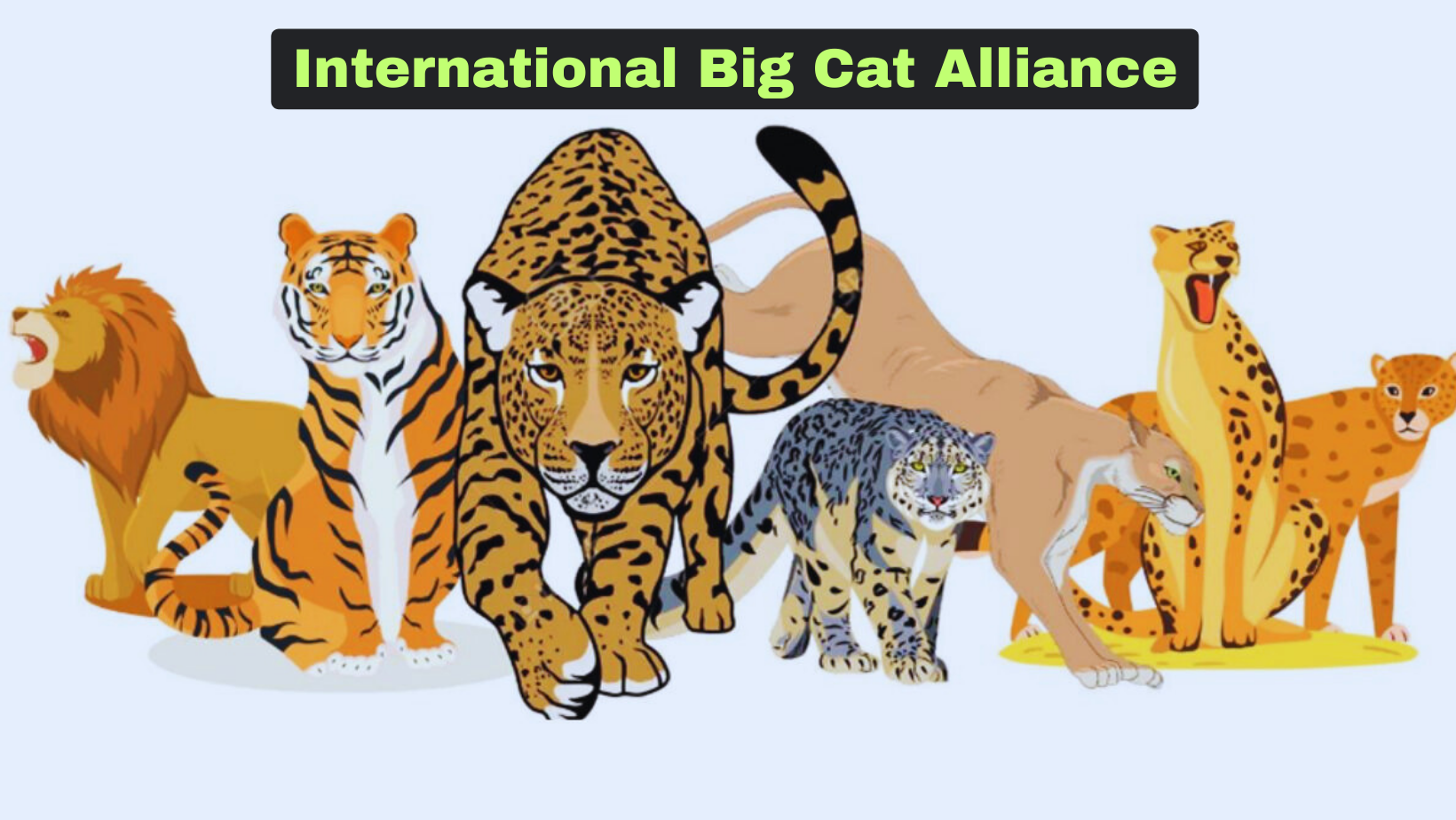
- 01 Mar 2024
Why is it in the News?
The Union Environment Ministry plans to set up and coordinate an International Big Cat Alliance (IBCA), along the lines of the International Solar Alliance, an India-headquartered initiative to promote solar installations globally.
About the International Big Cat Alliance (IBCA):
- The idea of the International Big Cat Alliance (IBCA) was first given by Prime Minister Modi during his speech on the occasion of Global Tiger Day in 2019.
- He called for developing an alliance of global leaders to curb poaching in Asia.
- The alliance was formally announced on April 9, 202, in Mysuru, as India commemorated the completion of 50 years of Project Tiger.
- The alliance will focus on the conservation of seven big cats, which include Tiger, Lion, Leopard, Snow Leopard, Puma, Jaguar, and Cheetah. Out of these, five are found in India.
- Membership to the IBCA is open to 97 'range' countries, encompassing the natural habitats of these big cats, as well as other interested nations and international organizations.
- The alliance aims to facilitate cooperation among countries to advance the conservation agenda for mutual benefit.
- Operating with a multifaceted approach, the IBCA endeavours to establish robust linkages across various domains, including knowledge sharing, capacity building, networking, advocacy, financial and resource support, research, technical assistance, education, and awareness.
- Governance of the alliance consists of a General Assembly comprising all member countries, a Council comprised of seven to fifteen member countries elected by the General Assembly for a five-year term, and a Secretariat.
- The IBCA Secretary General, appointed by the General Assembly upon the Council's recommendation, serves a specific term.
- To support its initiatives, the IBCA has secured initial funding of Rs. 150 crore from the Government of India for the period spanning from 2023-24 to 2027-28.
New waste management technology could improve life in rural India
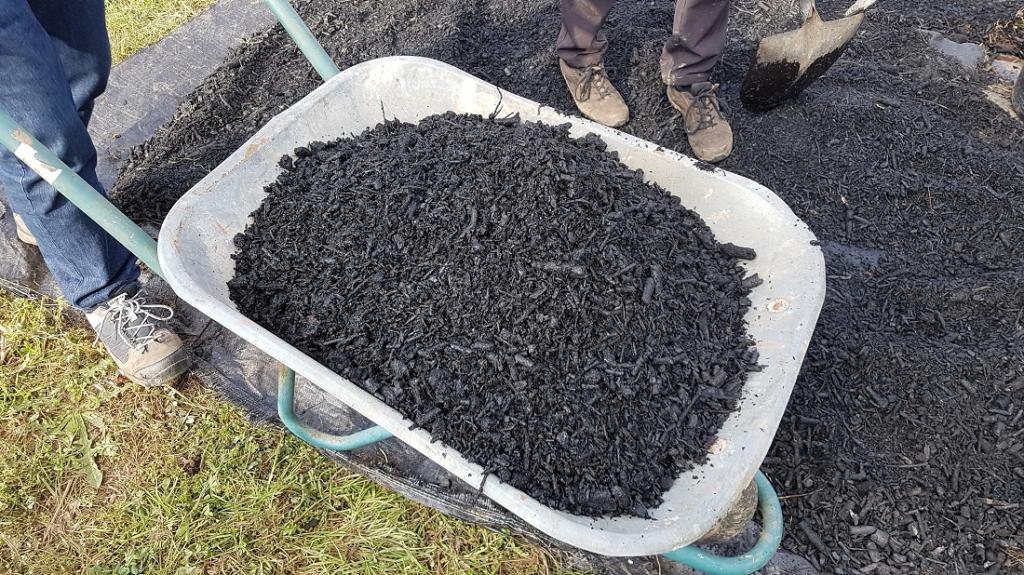
- 29 Feb 2024
Why is it in the News?
A new waste management technology that allows pyrolysis at a community level could help rural Indians cut indoor air pollution, improve soil health, and generate clean power, a recent study has claimed.
What is BioTRIG?
- BioTRIG represents a novel waste management technology centered around pyrolysis, poised to mitigate indoor air pollution, enhance soil quality, and foster clean energy generation across rural India.
- This community-oriented pyrolysis system is ingeniously crafted to utilize locally generated waste, offering a sustainable solution tailored to village environments.
- The innovative process yields three valuable by-products: bio-oil, syngas, and biochar fertilizer, presenting multifaceted benefits for rural communities, from cleaner energy sources to enhanced agricultural productivity.
- Moreover, the self-sustaining nature of BioTRIG enables the utilization of syngas and bio-oil to fuel subsequent pyrolysis cycles, with excess electricity catering to local energy needs, fostering self-reliance and sustainability.
- By harnessing the clean-burning properties of bio-oil and the soil-enriching qualities of biochar, BioTRIG empowers rural households to transition away from traditional cooking fuels while concurrently enhancing agricultural resilience and carbon sequestration efforts.
Significance:
- Computer simulations indicate that the BioTRIG system holds the potential to significantly mitigate greenhouse gas emissions from communities, potentially reducing them by nearly 350 kg of CO2-eq per capita per year.
- This projection underscores a noteworthy positive influence on both climate emissions and public health.
- The BioTRIG technology could mark a paradigm shift in waste management practices and energy generation methods within rural India, promising transformative benefits for communities.
What is Pyrolysis?
- Pyrolysis is a transformative chemical recycling method that disassembles residual organic matter into its fundamental molecular components.
- This innovative process entails confining the waste within an oxygen-deprived enclosure and subjecting it to temperatures exceeding 400 degrees Celsius.
European Parliament adopts nature restoration law
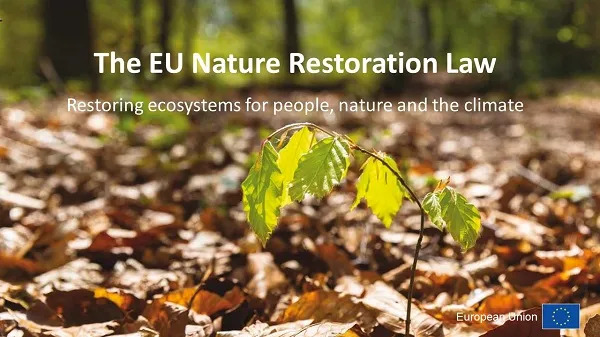
- 29 Feb 2024
Why is it in the News?
The European Parliament recently adopted the first European Union (EU) law to restore degraded ecosystems across the 27-nation political and economic bloc.
About the Nature Restoration Law:
- The Nature Restoration Law is hailed as a significant stride toward rejuvenating Europe’s natural habitats, with a staggering 81% currently classified as being in poor health.
- It sets a pioneering example for global emulation, emphasizing the criticality of safeguarding and revitalizing our natural environment for the welfare of forthcoming generations.
Objectives:
- This legislation aims to rejuvenate ecosystems, habitats, and species across the European Union's (EU) terrestrial and marine domains, fostering the enduring recuperation of diverse and robust nature.
- Additionally, it endeavors to contribute to the EU's climate mitigation and adaptation objectives while fulfilling international commitments.
- These directives aspire to encompass a minimum of 20% of the EU's land and marine territories by 2030, with the ultimate goal of restoring all ecosystems in need by 2050.
Specific Targets:
- Wetlands, forests, grasslands, rivers, lakes, heath & scrub, rocky habitats, and dunes: The objective is to enhance and restore biodiverse habitats on a large scale, fostering the recovery of species populations through habitat improvement and expansion.
- Pollinating Insects: The target is to reverse the decline of pollinator populations by 2030, aiming for a positive trajectory in pollinator numbers.
- Forest Ecosystems: The aim is to promote an upward trend in standing and fallen deadwood, varied aged forests, forest connectivity, common forest bird populations, and organic carbon reserves.
- Urban Ecosystems: The objective is to achieve zero net loss of green urban spaces by 2030 and expand the total area covered by green urban spaces by 2040 and 2050.
- Agricultural Ecosystems: The goal is to bolster grassland butterfly and farmland bird populations, increase organic carbon reserves in cropland mineral soils, and augment the proportion of agricultural land featuring diverse landscape characteristics.
About the European Union (EU):
- The European Union (EU) is a political and economic union of 27 European countries that collaborate on various issues, including trade, security, and environmental protection.
- Founded after World War II to promote peace and economic cooperation, the EU has evolved into a complex organization with its own institutions, laws, and currency (the euro).
- It operates on the principles of democracy, human rights, and the rule of law, with the European Commission, European Parliament, and European Council among its key decision-making bodies.
- The EU's single market allows for the free movement of goods, services, capital, and people across member states, fostering economic growth and prosperity.
- Additionally, the EU plays a prominent role in global affairs, advocating for multilateralism, sustainable development, and climate action.
African leaders demand financial systems reform; launch ‘Africa Club’ at 37th African Union Summit
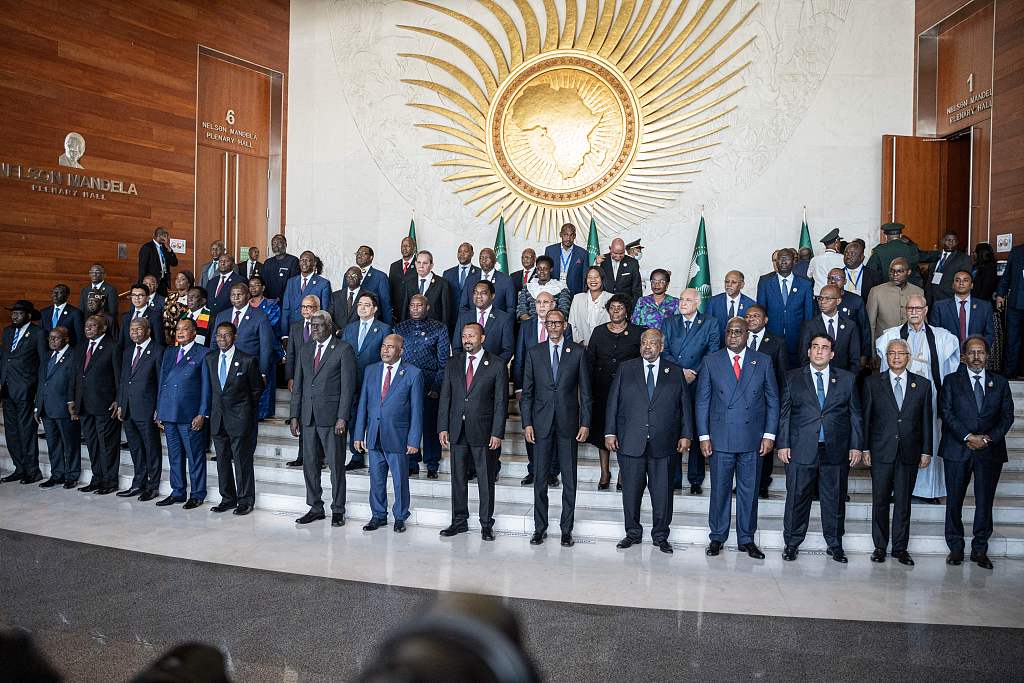
- 28 Feb 2024
Why is it in the News?
Recently, during the 37th African Union Summit, member countries initiated the formation of the Africa Club.
What is the Africa Club?
- The Africa Club is an alliance of African Multilateral Financial Institutions, established at the African Union summit, designed to enhance Africa's influence in the global financial system.
- The initiative aims to align its operations with the Sustainable Development Goals (SDGs) and the African Union's Agenda 2063, fostering innovative financial instruments, facilitating debt management discussions, and promoting collaborative efforts to address the specific needs of African nations.
- Its membership comprises key institutions such as the African Export-Import Bank, Trade and Development Bank, Africa Finance Corporation, African Reinsurance Corporation, African Trade and Investment Development Insurance, Shelter Afrique Development Bank, and ZEP – RE (PTA Reinsurance Co).
About the African Union:
- The African Union is a continental organization consisting of 55 member states across the African continent, established on May 26, 2001, in Addis Ababa, Ethiopia.
- The AU's objectives include promoting peace, security, and stability on the continent, accelerating political and socioeconomic integration, defending the sovereignty and territorial integrity of member states, and advancing sustainable development.
- It serves as a platform for African countries to coordinate their efforts in various fields, including governance, human rights, economic development, infrastructure, health, education, and culture.
- The AU's structures include the Assembly of Heads of State and Government, the Executive Council, the Pan-African Parliament, the African Court of Justice and Human Rights, and various specialized technical committees and organs.
- Through its initiatives and programs, the AU works towards realizing the vision of an integrated, prosperous, and peaceful Africa, driven by its citizens and representing a dynamic force in the global arena.
Ex-SC Judge Justice AM Khanwilkar Appointed As Lokpal Chairperson
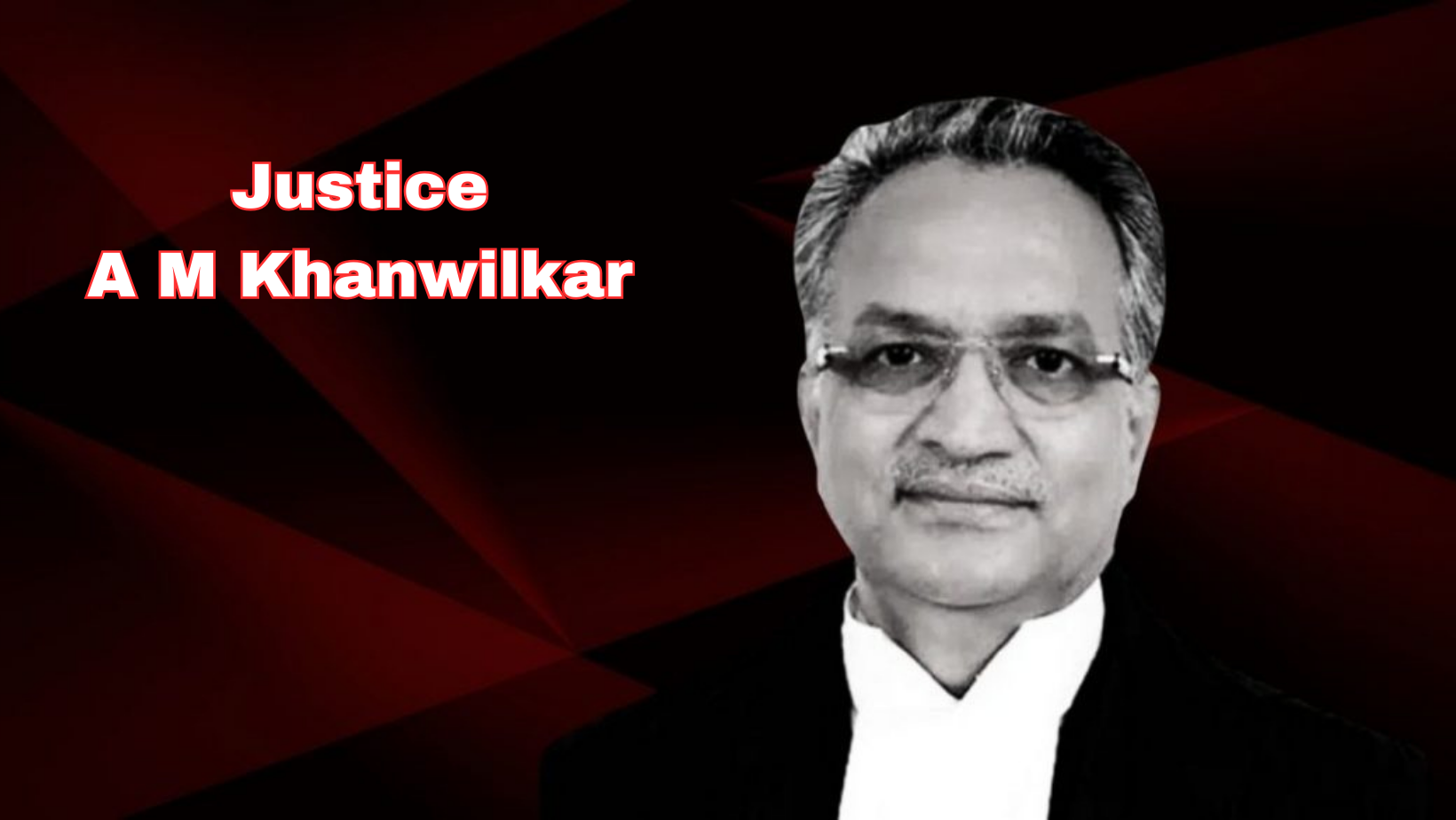
- 28 Feb 2024
Why is it in the News?
Nearly 19 months after he retired as a Supreme Court judge, Justice A M Khanwilkar was appointed the chairperson of the anti-corruption ombudsman Lokpal on Tuesday. The post fell vacant nearly two years ago.
Who is AM Khanwilkar?
- Justice Ajay Manikrao Khanwilkar was a Supreme Court judge between May 2016 and July 2022.
- He has also served as chief justice of the Madhya Pradesh High Court and the Himachal Pradesh High Court and as a judge of the Bombay High Court.
- Recently appointed as the Chairperson of the anti-corruption ombudsman Lokpal on Tuesday.
- The appointment came nearly two years after the post fell vacant.
- Khanwilkar was elected for the post following discussions by a high-level committee, which included:
- Prime Minister Narendra Modi
- Chief Justice of India DY Chandrachud
- Leader of the Opposition in Lok Sabha, Adhir Ranjan Chowdhury
- The Lokpal has been functioning without its permanent chief since the conclusion of Justice Pinaki Chandra Ghose's term on May 27, 2022.
About Lokpal:
- The Lokpal is a statutory body established under the Lokpal and Lokayuktas Act of 2013.
- Its primary mandate is to investigate allegations of corruption against certain public officials and handle related matters.
- The organizational structure of Lokpal includes a chairperson and a maximum of eight members.
- The chairperson must be a former Chief Justice of India, a former Judge of the Supreme Court, or an eminent individual meeting specified eligibility criteria.
- Half of the maximum eight members are judicial members, who must be former Judges of the Supreme Court or former Chief Justices of High Courts.
- Additionally, a minimum of fifty percent of the members are drawn from SC/ST/OBC/minority backgrounds and include women.
How are Members Appointed?
- The President of India appoints the Chairperson and Members based on recommendations from a selection committee.
- This committee comprises the Prime Minister as Chairperson, the Speaker of Lok Sabha, the Leader of Opposition in Lok Sabha, the Chief Justice of India or a nominated Judge, and one eminent jurist.
- Members serve a term of five years or until they reach 70 years of age, whichever comes first, starting from the date they assume office.
- The Chairperson receives salary, allowances, and other benefits equivalent to those of the Chief Justice of India.
- Similarly, Members receive salary, allowances, and other benefits equivalent to those of a Judge of the Supreme Court.
Jurisdiction:
- The Lokpal has the authority to investigate allegations of corruption against current or former Prime Ministers, Union Ministers, Members of Parliament, and officials from various levels of the Union Government categorized under Groups A, B, C, and D.
- Its jurisdiction extends to include chairpersons, members, officers, and directors of entities established by parliamentary acts or financed by the Union or State government, as well as any organization receiving foreign contributions exceeding Rs 10 lakh.
- However, there are exceptions regarding the Prime Minister's jurisdiction. The Lokpal cannot investigate allegations related to international relations, external/internal security, public order, atomic energy, and space. Moreover, complaints against the PM require approval from at least two-thirds of the Lokpal's members before initiation of an inquiry.
Powers of Lokpal:
- The Lokpal possesses the authority to oversee and issue directives to the Central Bureau of Investigation (CBI).
- Once the Lokpal has referred a case to the CBI, the investigating officer cannot be transferred without the Lokpal's approval.
- It holds the power to authorize the CBI to conduct search and seizure operations related to these cases.
- The Inquiry Wing of the Lokpal is endowed with powers akin to those of a civil court.
- In specific circumstances, the Lokpal can confiscate assets, proceeds, receipts, and benefits obtained through corrupt means.
- It is empowered to recommend the transfer or suspension of public servants implicated in corruption allegations.
- The Lokpal can issue directives to prevent the destruction of records during the preliminary inquiry phase.
- As per Section 48 of the Act, the Lokpal is mandated to submit an annual report on its activities to the President, which is subsequently laid before both Houses of Parliament.
Ladakh: Centre agrees to examine demand for statehood, inclusion in Sixth Schedule of Constitution
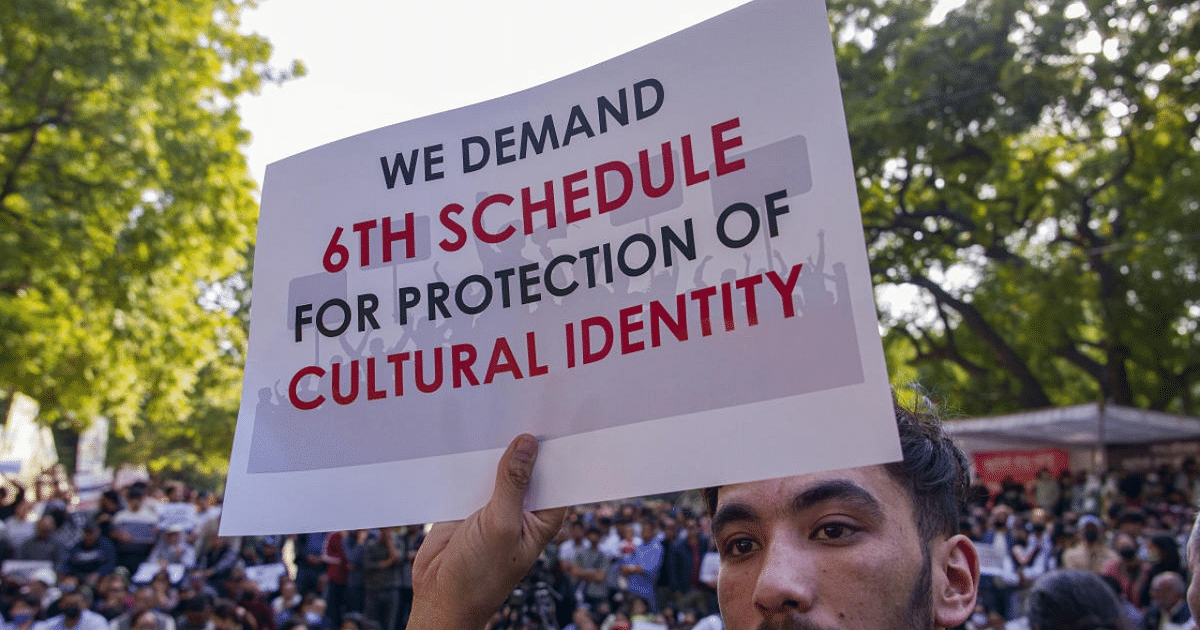
- 26 Feb 2024
Why is it in the News?
Recently, the Centre has agreed to examine whether the provisions of the Sixth Schedule of the Constitution can be implemented in Ladakh.
What is the Sixth Schedule?
- The Sixth Schedule under Article 244 provides for the formation of autonomous administrative divisions — Autonomous District Councils (ADCs) — that have some legislative, judicial, and administrative autonomy within a state.
- ADCs have up to 30 members with a term of 5 years and can make laws, rules and regulations with regard to land, forest, water, agriculture, village councils, health, sanitation, village- and town-level policing, inheritance, marriage and divorce, social customs and mining, etc.
- The Bodoland Territorial Council in Assam is an exception with more than 40 members and the right to make laws on 39 issues.
- The Sixth Schedule applies to the Northeastern states of Assam, Meghalaya, Mizoram (three Councils each), and Tripura (one Council).
Why does Ladakh want to be part of the Sixth Schedule?
- There was much enthusiasm initially, mostly in Leh, after the August 5, 2019 decisions that created two new Union Territories.
- The Buddhist-dominated Leh district had long demanded UT status because it felt neglected by the erstwhile state government, which was dominated by politicians from Kashmir and Jammu.
- This development has sparked concerns among locals regarding potential challenges related to identity preservation, resource allocation, and administrative oversight.
- Also, the changed domicile policy in Jammu and Kashmir has raised fears in the region about its own land, employment, demography, and cultural identity.
- The UT has two Hill councils in Leh and Kargil, but neither is under the Sixth Schedule.
- Their powers are limited to the collection of some local taxes such as parking fees and allotment and use of land vested by the Centre.
- The Sixth Schedule empowers the Governor of the State to designate specific areas as administrative units within the Autonomous Districts and Autonomous Regions.
Can Ladakh be included in the Sixth Schedule?
- In September 2019, the National Commission for Scheduled Tribes recommended the inclusion of Ladakh under the Sixth Schedule, noting that the new UT was predominantly tribal (more than 97%), people from other parts of the country had been restricted from purchasing or acquiring land there, and its distinct cultural heritage needed preservation.
- Notably, no region outside the Northeast has been included in the Sixth Schedule.
- In fact, even in Manipur, which has predominantly tribal populations in some places, the autonomous councils are not included in the Sixth Schedule.
- Nagaland and Arunachal Pradesh, which are totally tribal, are also not in the Sixth Schedule.
- “Ladakh’s inclusion in the Sixth Schedule would be difficult.
- The Constitution is very clear, the Sixth Schedule is for the Northeast.
- For tribal areas in the rest of the country, there is the Fifth Schedule.
- However, it remains the prerogative of the government — it can, if it so decides, bring a Bill to amend the Constitution for this purpose.
G-33 calls for progress on agricultural trade ahead of WTO Ministerial Conference
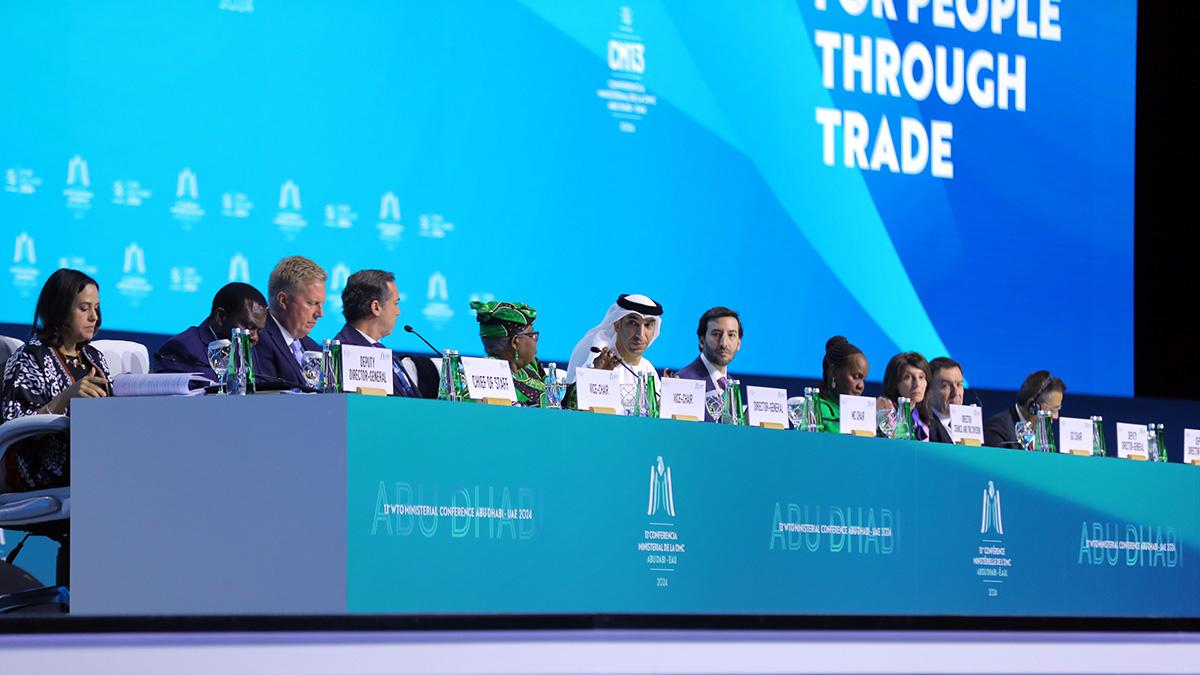
- 26 Feb 2024
Why is it in the News?
The G-33 group of countries recently expressed serious concern over the lack of progress in agriculture trade negotiations and urged the members of the World Trade Organisation (WTO) to work on a permanent solution to the issue of public stockholding of grains for food security purposes.
Key Highlights of the G33 Trade Ministers Meeting in Abu Dhabi:
- Special Safeguard Mechanism: The G33 group emphasized the importance of the Special Safeguard Mechanism (SSM) as a crucial instrument against significant import surges or sudden price declines.
- They called for WTO members to reach an agreement and adopt a decision on SSM by the 14th WTO Ministerial Conference (MC).
- Permanent Solution for Public Stockholding: The G33 nations sought a permanent solution during the 13th Ministerial Conference, which commenced in Abu Dhabi recently.
- The MC serves as the highest decision-making body of the WTO.
- Critical Importance of Public Stockholding: The G33 statement highlighted the critical significance of public stockholding for food security in developing countries.
- It enables governments to procure crops from farmers at the minimum support price (MSP) and store and distribute food grains to the poor.
- This program supports low-income or resource-poor producers and contributes to rural development.
- The 13th WTO Ministerial Conference provides a crucial platform for WTO members to engage in constructive discussions and work towards finding mutually beneficial solutions.
What is G 33?
- The G33 is a forum of developing countries including India, Brazil, South Africa etc. formed during the Cancun ministerial conference of the WTO (2003), to protect the interest of the developing countries in agricultural trade negotiations.
- It was created to help group countries which were all facing similar problems.
- The G33 has proposed special rules for developing countries at WTO negotiations, like allowing them to continue to restrict access to their agricultural markets.
- Dominated by India, the group has "defensive" concerns regarding agriculture in relation to World Trade Organization negotiations, and seeks to limit the degree of market opening required of developing countries.
- The group has advocated the creation of a "special products" exemption, which would allow developing countries to exempt certain products from tariff exemptions, and also a "special safeguard mechanism" which would permit tariff increases in response to import surges.
Analysis of Household Consumption Expenditure Survey 2022-23 Report

- 26 Feb 2024
Why is it in the News?
The per capita monthly household expenditure more than doubled in 2022-23 as compared to 2011-12, according to the latest study by the National Sample Survey Office (NSSO).
Context:
- As per the 2022-23 report, rising inequality between the top and bottom of the pyramid.
- Urban and rural households register higher expenditure, spending less on food items.
- New methodology and questionnaire used in Household Consumption Expenditure Survey (HCES) 2022-23.
About the National Sample Survey Office (NSSO):
- The National Sample Survey Office (NSSO) comes under the Ministry of Statistics and Program Implementation headed by a Director General.
- It is responsible for the conduct of large-scale sample surveys in diverse fields on an All-India basis.
- Primarily data are collected through nationwide household surveys on various socio-economic subjects, Annual Survey of Industries (ASI), etc.
- Besides these surveys, NSSO collects data on rural and urban prices and plays a significant role in the improvement of crop statistics through supervision of the area enumeration and crop estimation surveys of the State agencies.
- It also maintains a frame of urban area units for use in sample surveys in urban areas.
The NSSO has four Divisions:
- Survey Design and Research Division (SDRD): This Division, located at Kolkata, is responsible for the technical planning of surveys, formulation of concepts and definitions, sampling design, designing of inquiry schedules, drawing up of tabulation plans, and analysis and presentation of survey results.
- Field Operations Division (FOD): The Division, with its headquarters at Delhi/Faridabad, is responsible for the collection of primary data for the surveys undertaken by NSS.
- Data Processing Division (DPD): The Division, with its headquarters at Kolkata is responsible for sample selection, software development, processing, validation and tabulation of the data collected through surveys.
- Survey Coordination Division (SCD): This Division, located in New Delhi, coordinates all the activities of different Divisions of NSS.
- It also brings out the bi-annual journal of NSS, titled “Sarvekshana”, and organizes National Seminars on the results of various Socio-economic surveys undertaken by NSS.
Key Insights From the 2022-23 Survey:
- Evolution of Food Expenditure: Over the past two decades, there has been a notable shift in spending patterns on food in India.
- Between 1999-2000 and 2022-23, both urban and rural households witnessed a gradual decline in the share of expenditure allocated to food.
- This period marks the first instance where food expenditure has dropped to below 50% in rural India and below 40% in urban India.
- Changing Dietary Preferences: The composition of food consumption has also undergone significant changes.
- Cereals and pulses have seen a reduction in their share of overall food consumption expenditure, while spending on milk has surged, surpassing that on cereals and pulses combined.
- In a noteworthy shift, the average Indian now spends more on fruits and vegetables than on food grains.
- Furthermore, expenditure on animal proteins like eggs, fish, and meat has shown a growing trend, indicating a preference for animal-based proteins over plant-based ones.
- Rise in Processed Food Consumption: There has been an observed increase in the share of expenditure allocated to processed foods, beverages, and purchased cooked meals.
- This trend aligns with the Engel Curve hypothesis, suggesting that as incomes rise, households allocate a smaller proportion of their spending to food and tend to prefer superior items over inferior ones.
- Closing Rural-Urban Consumption Gap: Consumption growth in rural areas has outpaced that in urban areas, leading to a narrowing of the rural-urban consumption divide.
- If this trend continues, it could potentially lead to parity in urban and rural incomes and consumption patterns in the future.
- Challenges in Inflation Calculation: The findings of the latest Household Consumption Expenditure (HCE) Survey underscore the need to review the inflation basket.
- The current Consumer Price Index (CPI)-based inflation calculation, established in 2012, may not accurately reflect contemporary consumption patterns.
- For instance, the disparity between the weightage assigned to cereals in the CPI basket and actual expenditure on cereals by rural households highlights the need for recalibration.
- Insights on Poverty Reduction: According to NITI Aayog CEO B V R Subrahmanyam, the latest survey indicates a reduction in poverty to five per cent nationwide.
- Both rural and urban areas are witnessing increased prosperity, as evidenced by rising per capita monthly expenditure.
- Demand for Legal Guarantee to MSP: While there is a demand for a legal guarantee to Minimum Support Price (MSP) for 23 crops, including food grains and sugarcane, the survey data suggests that the growth in the farm sector is being primarily driven by livestock, fisheries, and horticulture crops.
- This poses a pertinent question regarding the promotion of production: should the focus be on crops outside the MSP purview, such as milk, fish, poultry products, fruits, and vegetables, given their growing consumption trends?
The NB8 visit to India focuses on cooperation and trust
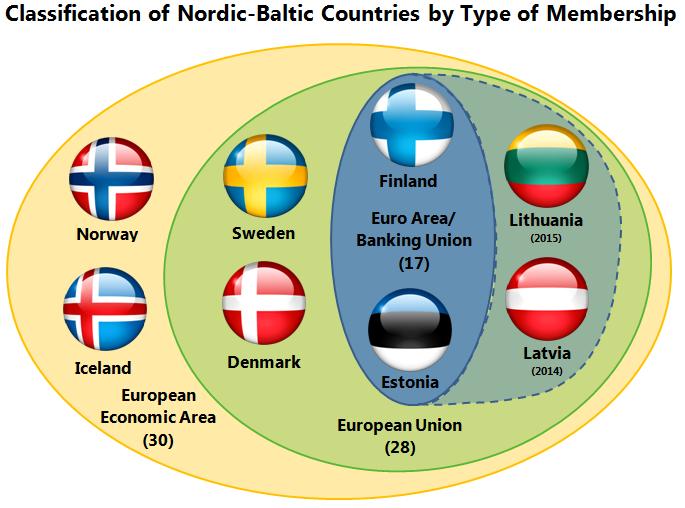
- 24 Feb 2024
Why is it in the News?
External Affairs Minister S Jaishankar hosted the India-Nordic-Baltic meeting on the sidelines of the ongoing Raisina Dialogue 2024 recently.
What are the Nordic-Baltic Countries?
- The Nordic-Baltic countries, also known as the NB8, are a group of Northern European countries that share historical, cultural, and geopolitical ties.
- The group includes
- Nordic countries of Denmark, Finland, Iceland, Norway, and Sweden, and
- Baltic countries of Estonia, Latvia, and Lithuania.
- These countries collaborate on various regional issues, such as security, economy, environment, and culture, and often work together within international organisations and forums.
- The term "Nordic-Baltic" highlights the close relationship and cooperation between these neighbouring states in the Baltic Sea region.
India's Relations with NB8 Countries:
- India's collaboration with NB8 nations is broadening, exemplified by initiatives like the India-Denmark Green Strategic Partnership, the India-Norway Task Force on Blue Economy, and cooperation on sustainability and ICT with Finland, including the 'LeadIT' (Leadership for Industry Transition) initiative with Sweden.
- Cooperation extends across various sectors, including innovation, green transition, maritime affairs, healthcare, intellectual property rights, emerging technologies, space exploration, and artificial intelligence.
- Trade and investment between the NB8 region and India are on a steady rise, reflecting deepening economic ties.
- Moreover, the security dynamics of the Nordic-Baltic region and the Indo-Pacific are intertwined, underlining the interconnectedness of regional security challenges.
Significance of NB8:
- The NB8 nations embody advanced economies characterised by their outward orientation, emphasis on innovation, complementarity, and seamless integration into the European Common Market, the world's largest single market area.
- The Baltic states, in particular, stand out as pioneers in IT, digitization, cyber technology, and green innovations, showcasing their leadership in these critical domains.
- Moreover, all NB8 members share a steadfast commitment to democracy and human rights, serving as advocates for an international order grounded in principles of multilateralism and adherence to international law.
NB8 Proposals for India:
- In light of the Ukraine conflict and its ripple effects on global food and energy security, supply chains, macro-financial stability, inflation, and growth, the NB8 seeks to collaborate with India in the following ways:
- Recognizing Shared Challenges: In an increasingly interconnected world, challenges such as the Ukraine conflict, global health crises, climate-related events, and geopolitical tensions affect us all.
- Acknowledging these shared challenges underscores the necessity for collaborative efforts to address them effectively.
- Embracing a Positive Agenda: There is an urgent imperative to pivot towards a more positive agenda for global cooperation.
- Leveraging our mutual commitment to the multilateral system, the NB8 proposes to enhance dialogue and cooperation on issues that are paramount to India's priorities and those of other global partners.
Govt amends electricity rules to speed up new connections, promote EVs and solar PV systems
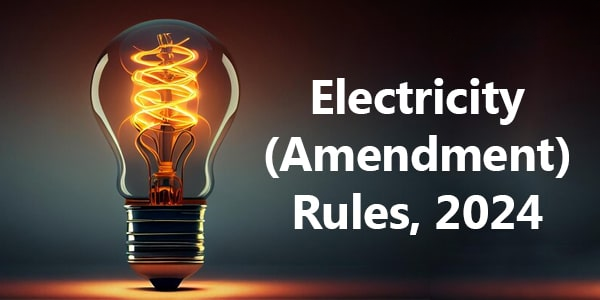
- 24 Feb 2024
Why is it in the News?
Recently, the government amended the Electricity (Rights of Consumers) Rules 2020, allowing consumers to now obtain separate electricity connections for charging their electric vehicles, and reducing the time period for obtaining a new electricity connection.
Context:
- The Government of India has recently approved the amendments to the Electricity (Rights of Consumers) Rules, 2020.
- According to the Union Minister for Power and New & Renewable Energy, Shri R. K. Singh, these amendments aim to expedite the process of obtaining new electricity connections.
- Encompassing various facets including billing, grievance redressal, compensation, and timeframes for new connections, these rules are designed to streamline consumer experiences.
- Moreover, they extend support to prosumers engaged in renewable energy generation.
- The amendments, as highlighted by the Minister, are poised to enhance consumer empowerment, fostering a more consumer-centric electricity ecosystem.
Major Amendments to the Electricity (Rights of Consumers) Rules, 2020:
- Streamlining Rooftop Solar Installation: Amendments exempt the requirement for technical feasibility studies for rooftop solar systems up to 10 kW capacity.
- For systems exceeding 10 kW, the timeframe for feasibility studies has been condensed from twenty to fifteen days, with automatic approval if deadlines are missed.
- Commissioning timelines for distribution licensees have been shortened from thirty to fifteen days.
- Dedicated Connections for Electric Vehicle Charging: Consumers can now secure separate electricity connections for charging Electric Vehicles (EVs), aligning with national emission reduction targets and Net Zero aspirations by 2070.
- Accelerated Connection Processes: New electricity connection timelines have been slashed from seven to three days in metropolitan areas, from fifteen to seven days in other municipal areas, and from thirty to fifteen days in rural regions.
- Exceptions apply in rural hilly terrains, maintaining the existing thirty-day period.
- Enhanced Consumer Rights in Residential Complexes: Residents in cooperative housing societies and residential colonies gain the option of individual or single-point connections, decided through transparent ballots conducted by Distribution Companies.
- Tariff parity is ensured between single-point and individual connections.
- Prompt Meter Installation for Complaints: Distribution licensees are mandated to install additional metres within five days of receiving complaints to verify consumption for a minimum of three months, enhancing consumer confidence and billing accuracy.
Race to the global eradication of Guinea worm disease nears the finish line
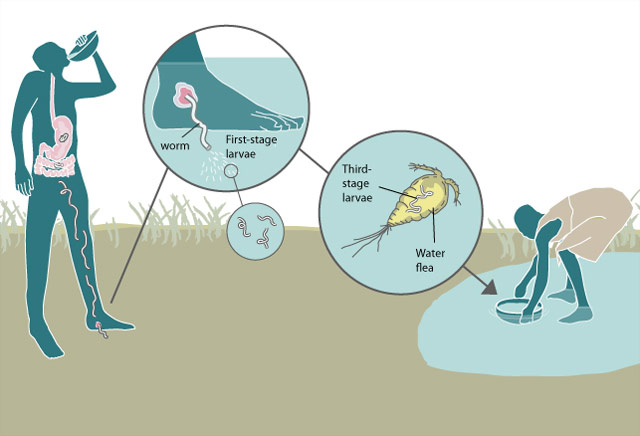
- 23 Feb 2024
Why is it in the News?
The world is on the brink of a public health triumph as it closes in on eradicating Guinea worm disease. There were more than 3.5 million cases of this disease in the 1980s, but according to the WHO, they dwindled to 14 cases in 2021, 13 in 2022, and just six in 2023.
What is Guinea Worm Disease?
- Dracunculiasis is also called guinea worm disease (GWD).
- It is an infection caused by a parasite called Dracunculus medinensis (guinea worm).
- This parasite is an organism that survives by deriving nutrients and feeding off another organism.
- GWD spreads through drinking contaminated water.
- It is presently eradicated in most parts of the world but is still seen in remote parts of Africa and some remote rural areas in the world where there is no access to clean drinking water.
- GWD is considered endemic in three African countries, Sudan, Ethiopia, and Mali.
- In recent years, a few cases of GWD in animals, especially dogs, have been reported in developed countries as well.
- GWD is a serious condition, that causes debilitating pain and complications, affecting the quality of life
Symptoms:
- People infected with Guinea worm don’t typically have any symptoms until about a year after they're first infected.
- It’s not until the worm is about to erupt from the skin that people start to feel sick.
- What that happens, the symptoms of Guinea worm disease can include Fever, Nausea and vomiting, Diarrhoea, Shortness of breath, Burning, itching, pain, and swelling where the worm is in the body (often the legs and feet) and Blister where the worm breaks through the skin.
Impact:
- Guinea worm disease isn’t often deadly, but it can cause serious complications, lifelong disabilities, and financial hardship for those involved.
- The pain involved is often so intense that it’s difficult for people to work, go to school, or care for themselves or others.
- This lasts an average of 8.5 weeks, though lifelong disability is common.
Dracunculiasis Treatment:
- There is no vaccine or drug developed to prevent or treat this disease.
- The only means available is the management of the disease which is removing the whole worm and caring for the wound caused by it and avoiding infection in the process or exposure to the guinea worm larvae at all costs, especially by avoiding contaminated drinking water and stagnant water sources.
- Without proper treatment, wounds caused by the worm can become infected by bacteria, leading to sepsis, septic arthritis, and contractures (when joints lock and deform).
- In some cases, these infections become life-threatening.
Earth’s early evolution: Fresh insights from rocks formed 3.5 billion years ago
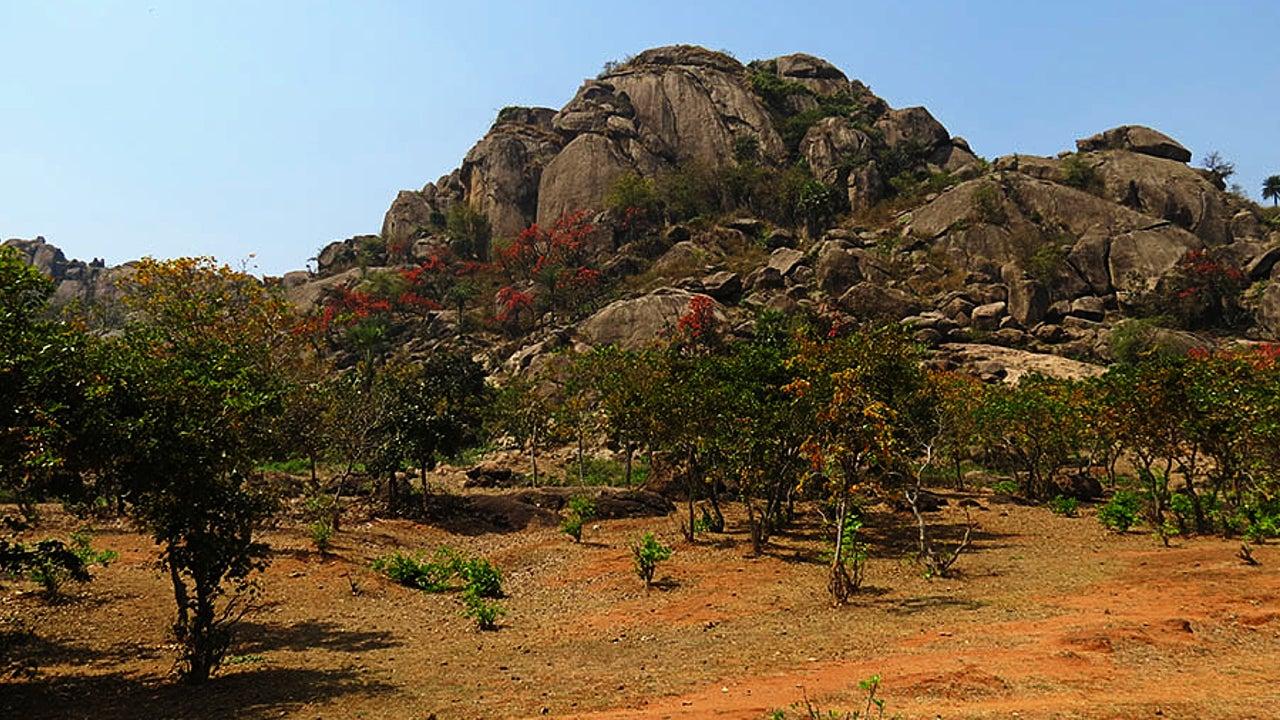
- 23 Feb 2024
Why is it in the News?
Exploring ancient cratons such as the Singhbhum Craton in India, alongside similar formations in South Africa and Australia, provides unparalleled insights into the early stages of our planet's development, reaching back approximately 3.5 billion years.
What is Singhbhum Craton?
- The Singhbhum Craton encompasses a vast expanse of rugged terrain, primarily spanning regions in Jharkhand and Odisha, situated between the Chhota Nagpur plateau and the Eastern Ghats.
- Dating back approximately 3.5 billion years, this ancient segment of the Earth's crust offers valuable insights into early geological processes.
- Its oldest rock formations consist predominantly of volcanic and sedimentary rocks, referred to as greenstone successions.
- Greenstones are characterised by submarine volcanic rocks with minor sedimentary components.
- Geologically akin to greenstone belts in South Africa's Barberton and Nondweni regions and the Pilbara Craton in Western Australia, these areas experienced extensive submarine mafic volcanic activity, rich in magnesium oxide, between 3.5 and 3.3 billion years ago, with preserved features like pillowed lava and komatiites.
Significance:
- The Singhbhum Craton sheds light on early tectonic activities during the Archaean era, enhancing our understanding of the Earth's formative stages.
- Its distinctive geological characteristics, particularly the presence of greenstone belts, yield invaluable data on surface and atmospheric processes crucial for theorising about early habitable conditions and the emergence of life on Earth.
What are Cratons?
- A craton is a stable and ancient part of Earth's lithosphere that has experienced long-term tectonic and geomorphic stability.
- It is considered to be the nucleus of a continent and is characterised by its thick and cold lithosphere.
- Cratons can undergo destruction, which is defined as a geological process resulting in the loss of craton stability due to changes in its physical and chemical properties.
- The mechanisms responsible for craton destruction include oceanic plate subduction, rollback and retreat of subducting plates, stagnation and dehydration of subducting plates in the mantle transition zone, melting of the mantle caused by dehydration of stagnant slabs, non-steady flow in the upper mantle induced by melting, and changes like the lithospheric mantle.
- Craton destruction can lead to crustal thinning, surface uplift, and the concentration of mineral deposits.
Eminent Jurist Senior Advocate Fali Nariman passes away
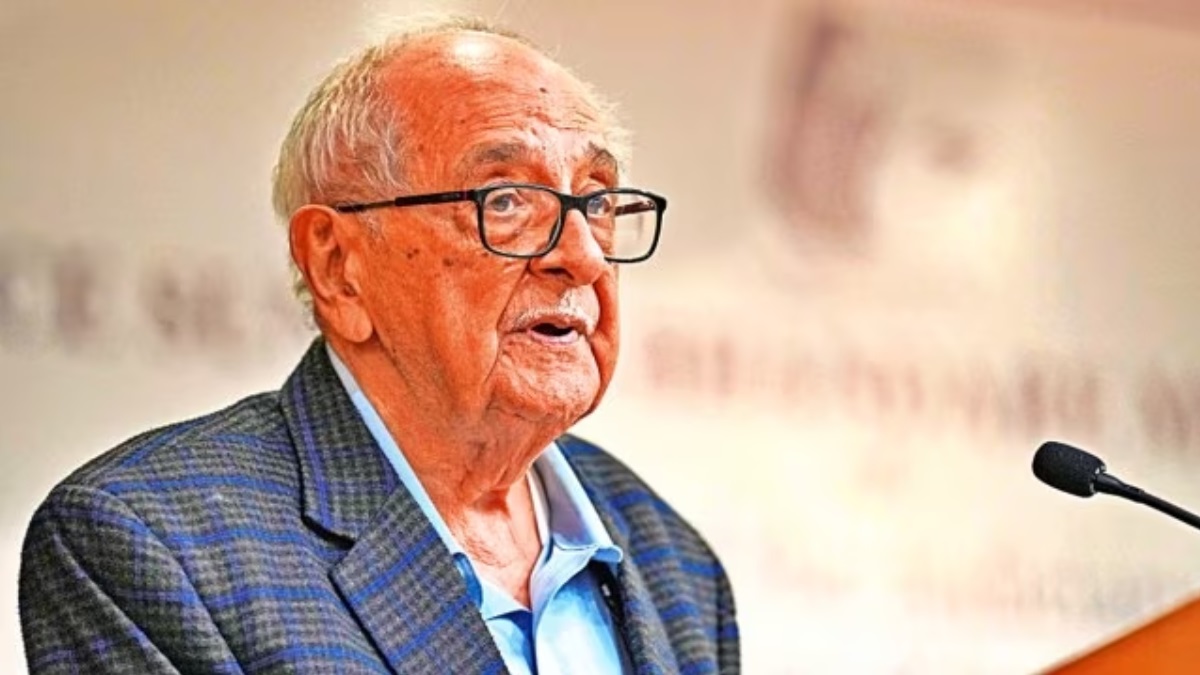
- 22 Feb 2024
Why is it in the News?
Recently, eminent jurist and senior advocate of the Supreme Court Fali S Nariman died at the age of 95.
Who was Fali S Nariman?
- Fali S Nariman was born on January 10, 1929, in Rangoon, then part of British India.
- He began his legal career by enrolling as an advocate of the Bombay High Court in November 1950.
- His stature grew, and he was designated as a senior advocate in 1961.
- In 1972, he moved to New Delhi to practise in the Supreme Court of India.
- In May 1972, Nariman assumed the role of additional solicitor-general of India; however, he resigned a day after the Emergency was imposed on June 26, 1975.
- He also served as the president of the International Council for Commercial Arbitration and chaired the Executive Committee of the International Commission of Jurists, Geneva, from 1995 to 1997.
- His son, Justice Rohinton F Nariman, formerly served as a judge on the Supreme Court.
- Nariman received the Padma Bhushan in January 1991 and in 2007 he was awarded the Padma Vibhushan.
What Were Some of Nariman's Landmark Cases?
- The Golak Nath case: In the historic judgement, the Supreme Court held that the Parliament cannot make a law which is capable of infringing the fundamental rights of citizens.
- It came up after two brothers in Punjab challenged the Constitution (17) Amendment Act, 1964, which came into effect by amending Article 31A of the Constitution. (This article deals with the acquisition of estates).
- Nariman, not only supported the petitioners but also appeared to argue on the issue representing the intervenors in the case.
- They argued that Parliament’s power to amend the Constitution under Article 368 did not include articles contained in Part III of the Constitution dealing with fundamental rights.
- Following the hearing of the case submitted in 1967, an eleven-judge bench agreed with the petitioner’s submissions pointing out that Article 13(2) states that Parliament cannot make a law which infringes fundamental rights.
- The Kesavananda Bharati case: The Kesavananda Bharati case is known for setting a benchmark in the Indian judiciary and had Nariman’s prompt representation in the SC.
- He assisted noted Advocate Nanabhoy Palkhivala in the famous case that led to the path-breaking judgement laying down the basic structure doctrine of the Constitution, clipping Parliament’s power to amend the Constitution.
- The 1973 verdict simultaneously gave the judiciary the authority to review any constitutional amendment on grounds of violation of the basic structure of the Constitution.
- The Bhopal Gas Tragedy case: In 1984, the Bhopal gas tragedy where 42 tons of toxic chemicals leaked from a pesticide plant owned by Union Carbide India Limited, resulting in thousands of deaths and environmental damage in the following years.
- The Supreme Court began hearing the case for compensation to the victims in 1988.
- Senior Advocate Nariman appeared, representing Union Carbide, and offered to pay a sum of 426 million dollars as compensation to the victims of the tragedy.
- In 1989, Union Carbide settled with the central government and agreed to pay 470 million dollars as compensation.
- The Cauvery Water Dispute case: Nariman represented Karnataka for over 30 years in the water-sharing dispute with Tamil Nadu.
- In 2016, the Supreme Court ordered the Karnataka government to release 6,000 cusecs (cubic feet per second) of water from September 21 to September 27.
- The Karnataka legislative assembly, however, passed a resolution stating that they did not have water to spare and chose to defy the court’s orders.
- Due to this non-compliance, Nariman refused to argue the case on behalf of the Karnataka government any further.
- On February 16, 2018, the court in its final judgement took note of Nariman’s stance on the issue and necessarily mentioned that Nariman had courageously lived up to the highest tradition of the Bar.
- The court then proceeded to reduce Karnataka’s annual water releases to 177.25 thousand million cubic feet (TMC) from 192 TMC.
- Disproportionate assets case against former Tamil Nadu Chief Minister J Jayalalithaa: AIADMK leader and former- Tamil Nadu CM Jayalalitha had been accused of misappropriating funds during her tenure between 1991 and 1995.
- A Sessions Court in Bangalore in September 2014 found that she had acquired property disproportionate to her known income and imposed a Rs 100 crore fine on her.
- This sentence was upheld by the Karnataka High Court a month later leading to an appeal at the Supreme Court.
- Nariman appeared on behalf of Jayalalitha in October 2014 and convinced the court to grant bail against executing the fine and suspend the sentence passed by the Sessions judge in Bangalore.
- The 1981 Second Judges case: The Supreme Court held that the primacy of the Chief Justice of India’s recommendation in judicial appointment and transfer can be turned down on cogent grounds by the government.
- However, the judicial discussions finally led to the creation of the collegium system of appointment of judges to constitutional courts in 1993, when the top court came out with its judgement in the second judge’s case.
- Nariman had stated that the advice given through consultation with the CJI must be seen as binding to protect the independence of the judiciary, as judges would be in a better position to determine the suitability and competence of candidates.
- In 1993, the nine-judge bench agreed with Nariman’s arguments and established the Supreme Court Collegium.
- The COVID-19 case: Nariman represented the Parsi community in its dispute over the protocol and standard operating procedure for handling of dead bodies of Parsi Zoroastrian COVID-19 victims under which metallic nets were to be installed above ‘Tower of Silence’ so that birds did not feed on the corpses and carry the killer virus elsewhere
Will the ‘Paruveta Festival’ celebrated in Andhra’s Ahobilam get UNESCO recognition?
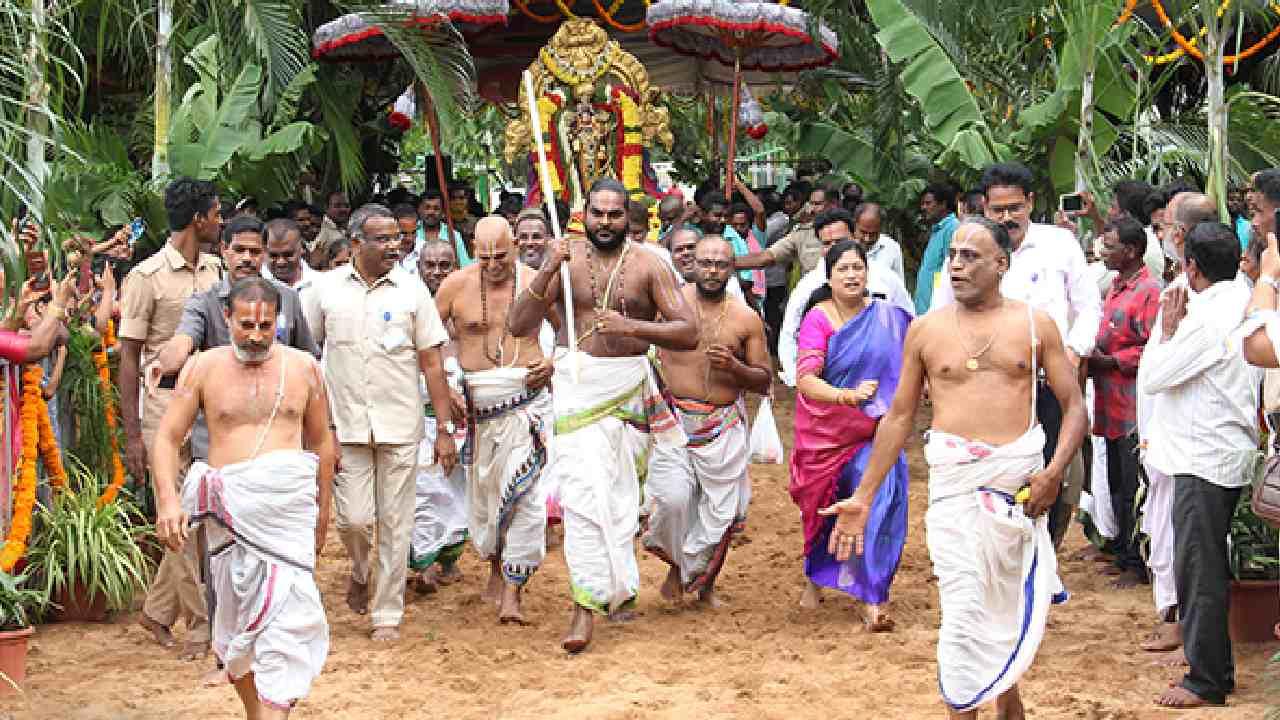
- 22 Feb 2024
Why is it in the News?
INTACH is striving to obtain UNESCO recognition for the yearly 'Paruveta' festival, emphasising its cultural significance.
About the Paruveta Festival:
- Paruveta Festival, also known as the 'mock hunting festival', is a celebrated tradition at the Sri Narasimha Swamy temple in Ahobilam, Andhra Pradesh.
- It stands out as a symbol of communal harmony, where devotees from various religious backgrounds, including Muslims, come together to offer prayers.
Origin and Significance:
- According to folklore, the festival commemorates Lord Vishnu's incarnation as Narasimha, who married Chenchulakshmi, a tribal girl, symbolising unity across different communities.
- The festival's rituals, typically observed during Vijayadashami or Sankranti, extend for a 'mandala' period of forty days in Ahobilam.
Activities and Customs:
- During the festival, the temple deity is carried to the 32 Chenchu tribal villages surrounding Ahobilam for forty days.
- The journey begins with a symbolic act where tribals shoot arrows at the deity's palanquin, signifying protection and reverence.
- Chenchus participated by undertaking 'Narasimha Deeksha', wearing yellow robes and Tulasi Mala, while observing celibacy.
- The temple staff reside in these villages throughout the festival, showcasing the tradition of a casteless society with no traces of untouchability.
Key Points about Chenchu Tribes:
- Geographic Distribution: Chenchu tribes primarily inhabit the hills of southern India, particularly in Andhra Pradesh.
- Additionally, Chenchu communities can be found in Tamil Nadu, Karnataka, and Orissa.
- Language and Communication: Their native language, known as Chenchu, belongs to the Dravidian language family.
- While many Chenchu individuals speak Telugu, their traditional language holds cultural significance.
- Livelihood and Occupation: Historically, Chenchu people pursued a nomadic lifestyle, relying on food gathering.
- However, due to factors such as agricultural expansion, many have transitioned to working as farmers or forest labourers.
- Housing and Settlements: Chenchu dwellings are typically hive-shaped structures constructed from wattle thatch, composed of interwoven poles, twigs, reeds, or branches.
- These houses reflect their traditional architectural style and are adapted to their environment.
- Social Structure: Chenchu society is organised into clans, which are extended family units, as well as local groups and individual families.
- They adhere to exogamous marriage practices, prohibiting unions within the same clan.
- Additionally, Chenchu kinship is patrilineal, tracing descent through male lineage.
Malta becomes the 119th member of the International Solar Alliance
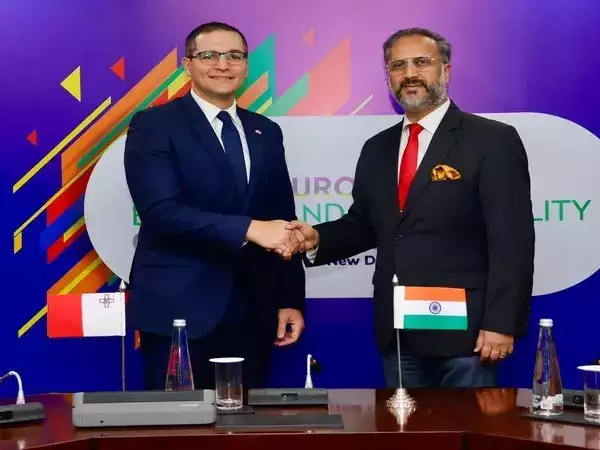
- 21 Feb 2024
Why is it in the News?
Malta became the 119th country to join the International Solar Alliance recently.
About the International Solar Alliance (ISA):
- The International Solar Alliance (ISA) is an alliance of more than 120 signatory countries that aims to reduce the dependence on non-renewable sources of energy like fossil fuels.
- Currently, 118 countries are signatories to the ISA Framework Agreement.
- The ISA is an action-oriented, member-driven, collaborative platform for increased deployment of solar energy technologies as a means for bringing energy access, ensuring energy security, and driving energy transition in its member countries.
- The platform strives to develop and deploy cost-effective and transformational energy solutions powered by the sun to help member countries develop low-carbon growth trajectories, with a particular focus on delivering impact in countries categorised as Least Developed Countries (LDCs) and the Small Island Developing States (SIDS).
- The ISA was conceived as a joint effort by India and France to mobilise efforts against climate change through the deployment of solar energy solutions.
- It was conceptualised on the sidelines of the 21st Conference of Parties (COP21) to the United Nations Framework Convention on Climate Change (UNFCCC) held in Paris in 2015.
Role of India:
- As a founding member, India holds a pivotal position within the alliance, serving both as a host nation and a major contributor to achieving its objectives.
- The ISA marks a historic milestone as the first international organisation to establish its secretariat in India.
- With a target of generating 100 GW of solar energy by 2022, India's commitment represents a significant portion of the ISA's overall goal.
Recent Developments:
- The ISA was granted Observer Status by the UN General Assembly, fostering closer collaboration between the alliance and the United Nations to advance global energy growth and development.
- The approval of the 'Solar Facility' by the ISA introduces a payment guarantee mechanism aimed at incentivizing investments in solar projects, further driving progress towards sustainable energy initiatives.
India contributes $1 million to fund combating poverty and hunger
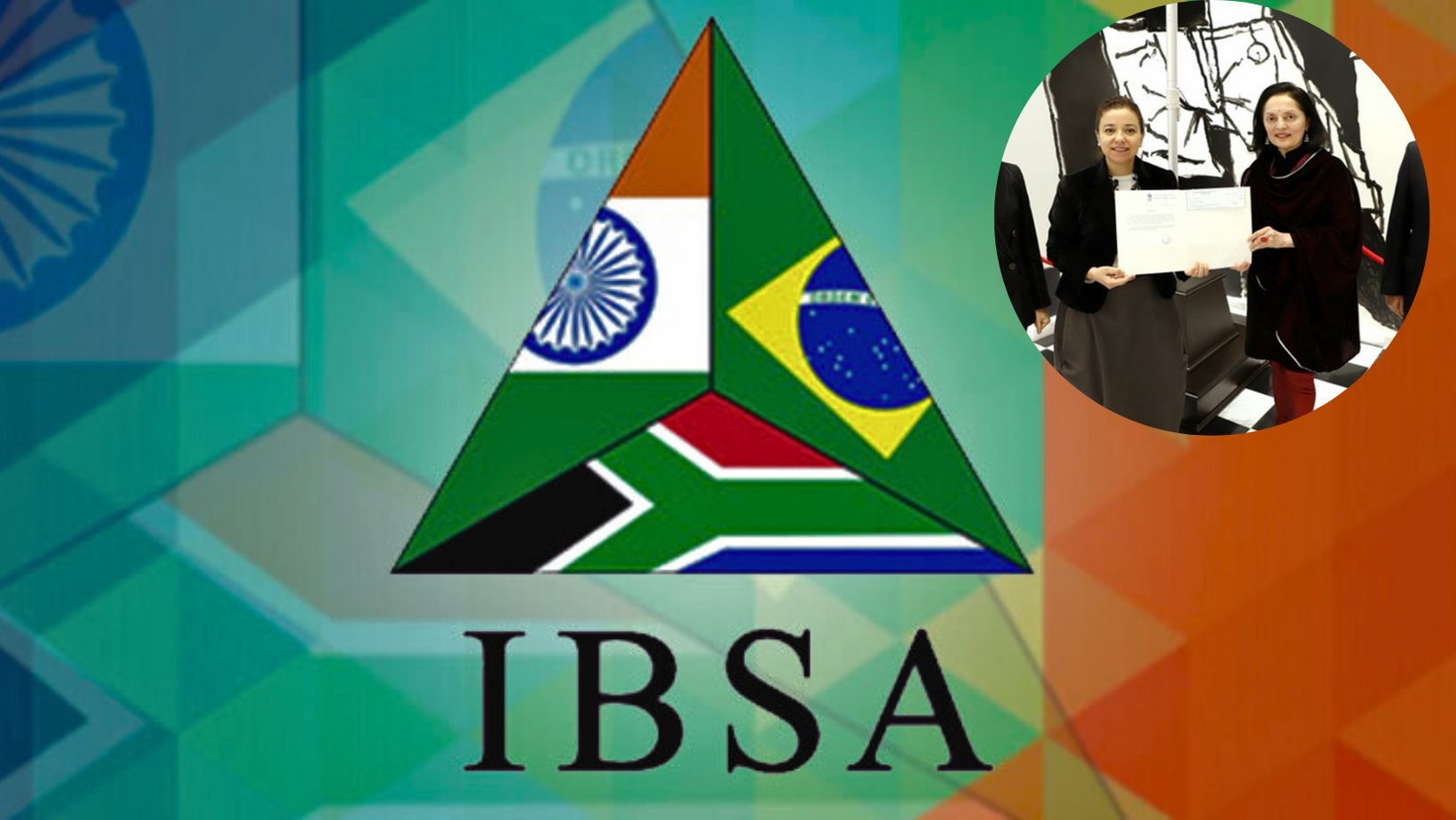
- 21 Feb 2024
Why is it in the News?
Recently, India has contributed 1 million US Dollars to the Poverty and Hunger Alleviation Fund established by India, Brazil, and South Africa, IBSA.
What is the IBSA Fund?
- Established in 2004 and operational since 2006, the IBSA Fund embodies the collaborative efforts of India, Brazil, and South Africa.
- Contributing one million dollars annually each, the IBSA countries unite in a spirit of partnership to champion Southern-led, demand-driven projects in developing nations.
- With a focus on identifying replicable and scalable initiatives, the fund aims to address pressing development challenges in recipient countries.
- Supported projects align with partner countries' national priorities and international development agendas, including the Sustainable Development Goals (SDGs).
- The fund's objectives encompass diverse areas such as promoting food security, combating HIV/AIDS, and expanding access to safe drinking water, among others, to advance sustainable development.
- To date, the IBSA Fund has allocated USD 50.6 million, funding 45 projects across 37 countries in the Global South.
- The United Nations Office for South-South Cooperation (UNOSSC) fulfils the roles of Fund Manager and Secretariat for the IBSA Fund.
What is IBSA?
- IBSA stands for the India, Brazil, and South Africa Dialogue Forum, a unique platform that unites three major democracies and significant economies from diverse continents, collectively addressing common challenges.
- Formally established as the IBSA Dialogue Forum during a historic meeting of the Foreign Ministers from India, Brazil, and South Africa in Brasilia on June 6, 2003, the forum's inception was marked by the issuance of the Brasilia Declaration.
- To date, five IBSA Leadership Summits have been convened, with the 5th Summit held in Pretoria on October 18, 2011.
- In 2021, India held the chairmanship of IBSA under the theme "Democracy for Demography and Development."
- On March 2, 2023, Brazil assumed the rotating presidency of the India, Brazil, South Africa Dialogue Forum (IBSA), further advancing the forum's collaborative agenda.
Global leaders converge in Delhi for Raisina Dialogue 2024
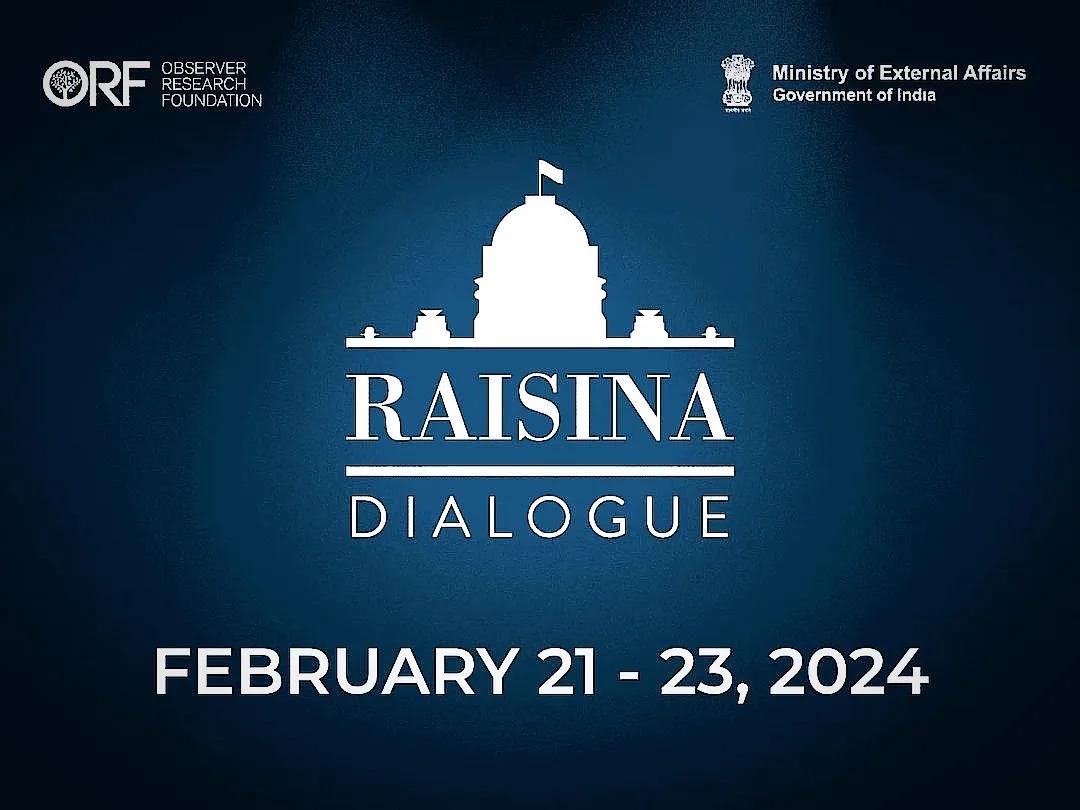
- 21 Feb 2024
Why is it in the News?
The ninth edition of the Raisina Dialogue will be held from today till Friday (February 23) in New Delhi.
What is the Raisina Dialogue?
- The Raisina Dialogue is India’s premier conference on geopolitics and geoeconomics committed to addressing the most challenging issues facing the global community.
- Every year, leaders in politics, business, media, and civil society converge in New Delhi to discuss the state of the world and explore opportunities for cooperation on a wide range of contemporary matters.
- The Dialogue is structured as a multi-stakeholder, cross-sectoral discussion, involving heads of state, cabinet ministers and local government officials, who are joined by thought leaders from the private sector, media and academia.
- The conference is hosted by the Observer Research Foundation in partnership with the Ministry of External Affairs, Government of India.
- This effort is supported by a number of institutions, organisations and individuals, who are committed to the mission of the conference.
- The theme of the 2024 edition is “Chaturanga: Conflict, Contest, Cooperate, Create”.
- During the three-day conference, the participants will engage with each other over six “thematic pillars”. These include:
- Tech Frontiers: Regulations & Realities
- Peace with the Planet: Invest & Innovate
- War & Peace: Armouries & Asymmetries
- Decolonising Multilateralism: Institutions & Inclusion
- The Post 2030 Agenda: People & Progress; and
- Defending Democracy: Society & Sovereignty.
India, and ASEAN discuss the review of the trade agreement
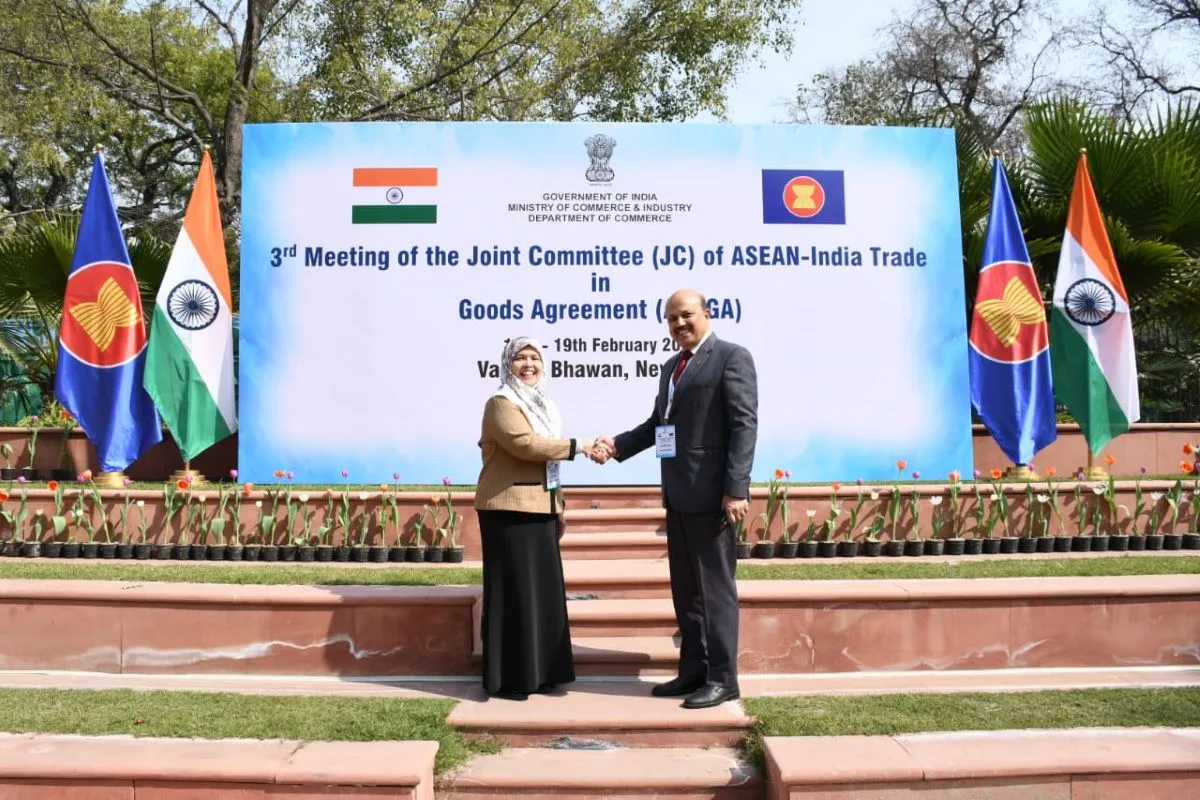
- 20 Feb 2024
Why is it in the News?
India hosted the 3rd meeting of the AITIGA Joint Committee, which focused on reviewing the ASEAN-India Trade in Goods Agreement at Vanijya Bhawan in New Delhi from February 16th to 19th, 2024.
About the ASEAN-India Trade in Goods Agreement (AITIGA):
- The ASEAN-India Trade in Goods Agreement (AITIGA) is a trade deal between the ten member states of ASEAN and India.
- ASEAN and India signed the Agreement at the 7th ASEAN Economic Ministers-India Consultations in Bangkok, Thailand in 2009.
- The Agreement, which came into effect in 2010, is sometimes referred to as the ASEAN-India Free Trade Agreement.
- The Agreement originated out of the Framework Agreement on Comprehensive Economic Cooperation between India and ASEAN created in 2003.
- The Framework Agreement laid a sound basis for the establishment of an ASEAN-India Free Trade Area (FTA), which includes FTA in goods, services and investment.
- The Agreement has led to steadily increasing trade between ASEAN and India since its signing.
- In 2019-20, trade between India and ASEAN was worth US$86 billion.
About ASEAN:
- The Association of Southeast Asian Nations, or ASEAN is an intergovernmental organization of ten Southeast Asian countries:
- Brunei, Cambodia, Indonesia, Laos, Malaysia, Myanmar, the Philippines, Singapore, Thailand, and Vietnam.
- ASEAN's primary objectives are to promote political and economic cooperation and regional stability among its member states.
- The organization operates on the principles of mutual respect, non-interference in internal affairs, and consensus-building. ASEAN's motto, "One Vision, One Identity, One Community," underscores its commitment to fostering unity and solidarity among Southeast Asian nations.
- Economically, ASEAN has made significant strides towards integration through initiatives like the ASEAN Economic Community (AEC), aimed at creating a single market and production base.
- This has facilitated trade, investment, and economic development within the region.
- Additionally, ASEAN serves as a platform for dialogue and cooperation on a wide range of issues, including security, environmental sustainability, cultural exchange, and disaster management.
Coal Ministry Hosts Industry Interaction on Coal Gasification (ET)
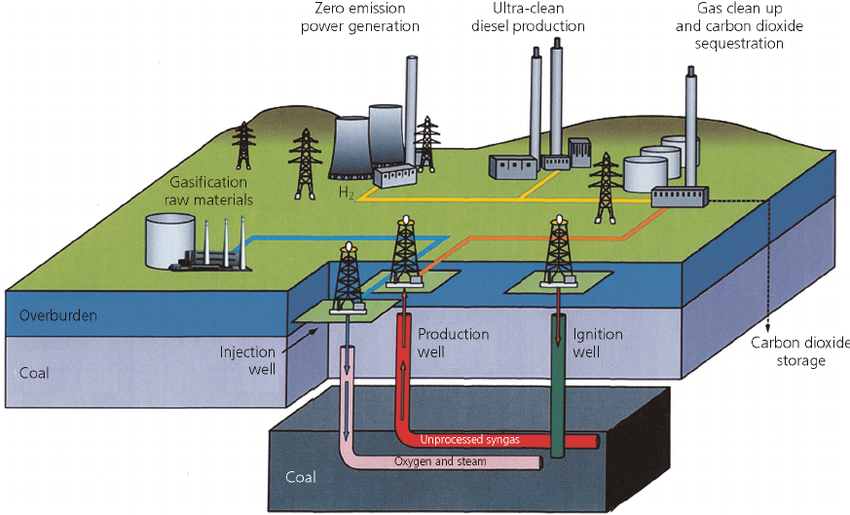
- 16 Feb 2024
Why is it in the News?
The Ministry of Coal has announced it will host an Industry Interaction on February 16, 2024, in Hyderabad to discuss the development of coal and lignite gasification projects across India.
What is Coal Gasification?
- Coal gasification is a process where coal undergoes partial oxidation with air, oxygen, steam, or carbon dioxide to produce a fuel gas.
- This gas serves as an alternative to piped natural gas or methane for energy generation.
- Underground Coal Gasification (UCG) is a technique involving the conversion of coal into gas within the seam, extracted through wells.
- Production of Syngas: This process yields Syngas, a mixture primarily comprising methane (CH4), carbon monoxide (CO), hydrogen (H2), carbon dioxide (CO2), and water vapour (H2O).
- Syngas finds applications in producing fertilisers, fuels, solvents, and synthetic materials.
- Significance: In manufacturing, steel companies traditionally rely on costly imported coking coal. Syngas derived from coal gasification offers a cost-effective alternative.
- It is utilized in electricity generation, chemical feedstock production, and hydrogen-based applications like ammonia production and fueling a hydrogen economy.
Advantages of Coal Gasification:
- Coal gasification offers a solution to local pollution issues.
- It is deemed environmentally cleaner than direct coal combustion.
- Decreasing dependence on imported natural gas, methanol, ammonia, and other vital commodities, enhances energy security.
- This technology has the potential to mitigate environmental impacts by curbing carbon emissions and promoting sustainable approaches, aligning with India's global objectives for a more environmentally sustainable future.
Concerns Associated with Coal Gasification Plants?
- The main disadvantage of coal gasification is that it is an expensive process.
- The process can produce a number of harmful emissions, including carbon dioxide, sulphur dioxide, nitrogen oxides, and mercury.
- The process produces a lot of ash, which can pollute the environment.
- The process uses a lot of water, which can lead to water shortages in areas where it is used.
The Global Pulses Conference (The Hindu)
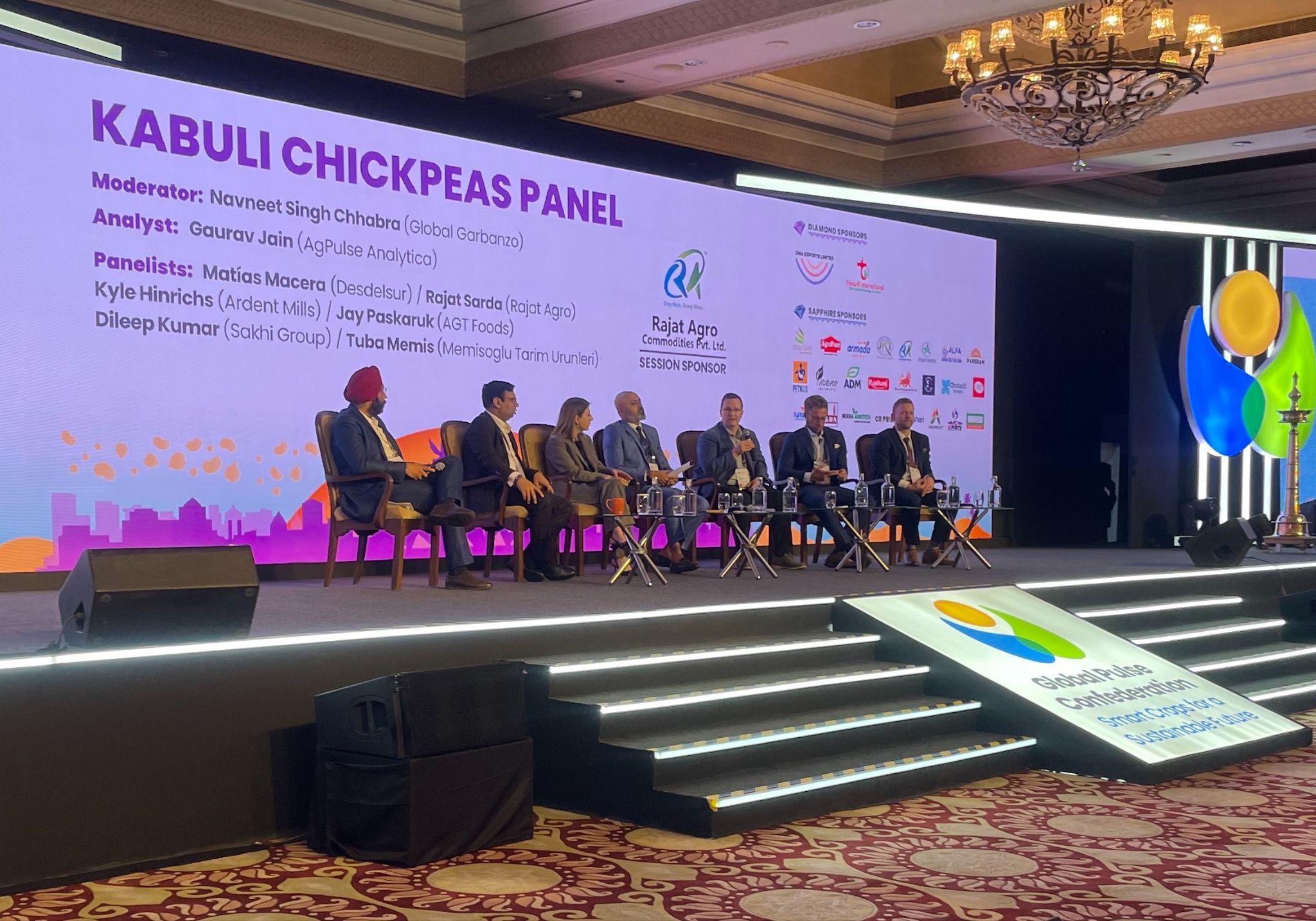
- 16 Feb 2024
Why is it in the News?
The Global Pulses Conference, an annual meeting of pulses producers, processors and traders, suggested that India augment the production of pulses to meet the nutritional requirements.
About the Global Pulses Confederation (GPC):
- The Global Pulses Confederation (GPC) serves as a global representative body for the pulse industry.
- Stakeholders: It encompasses various stakeholders within the pulse industry, such as growers, researchers, traders, government entities, processors, and consumers.
- Headquarters: The GPC is based in Dubai and operates under the licensing of the Dubai Multi Commodity Centre (DMCC).
- The Global Pulses Conference, held annually, took place in New Delhi this year.
Key Observations from the Conference:
- Self-Sufficiency Target: India aims to achieve self-sufficiency in pulses production by 2027, having already attained this status in chickpeas and various other pulse crops, with minor gaps remaining in pigeon peas and black gram.
- Decadal Growth: Pulse production has witnessed a significant 60% growth, increasing from 171 lakh tonnes in 2014 to 270 lakh tonnes in 2024.
- Minimum Support Price (MSP): The government has guaranteed farmers a minimum support price set at 50% above the actual cost of production, ensuring lucrative returns on investment.
- Current MSP rates reflect remarkable increases, such as 117% in masoor, 90% in moong, and substantial hikes in chana dal, toor, and urad compared to a decade ago.
- Government Initiatives: Efforts include the introduction of new seed varieties and the expansion of tur and black gram cultivation to bolster production.
- Importance of Pulse Crops: Pulse cultivation not only enriches soil health but also provides nutritional benefits, particularly for smallholding farmers.
- Improved cultivation practices promise widespread benefits for all stakeholders involved.
Status of Pulse Production in India:
- Production Trends: Over the past decade, pulse production in India has surged by 60%, escalating from 171 lakh tonnes in 2014 to 270 lakh tonnes in 2024.
- Global Standing: India boasts the distinction of being the world's largest producer, consumer, and importer of pulses. It contributes 25% to global production, consumes 27% of the world's total, and imports 14%.
- Agricultural Landscape: Pulses occupy approximately 20% of the foodgrain area in India and contribute 7-10% to the nation's total foodgrain production.
- Cultivation Seasons: While pulses are cultivated in both Kharif and Rabi seasons, Rabi pulses account for over 60% of the total production.
- Variety Distribution: Among pulse varieties, Gram leads the production, comprising roughly 40% of the total output, followed by Tur/Arhar at 15-20%, and Urad/Black Matpe and Moong each contributing approximately 8-10%.
- Self-Sufficiency: India has achieved self-sufficiency in chickpeas (chana) and various other pulse crops, with minor shortfalls, observed only in pigeon peas (tur) and black gram.
China Moves its Nationals into its Vacant ‘Defence Villages’ Along LAC (Indian Express)
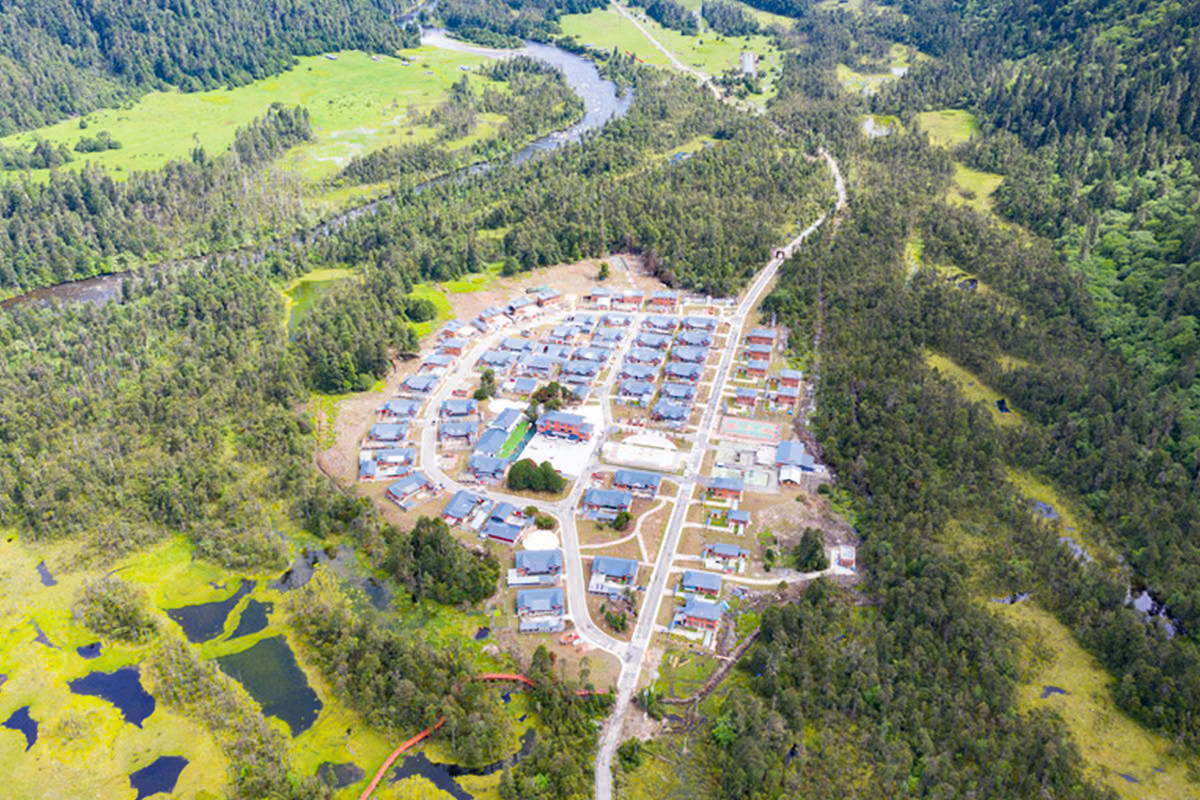
- 15 Feb 2024
Why is it in the News?
Chinese nationals have started occupying several of their model “Xiaokang” border defence villages across India’s north-eastern borders which the country has been building along the Line of Actual Control (LAC) since 2019.
News Summary:
- Chinese activity has been observed in several villages situated on its side of the Line of Actual Control (LAC) opposite the Lohit Valley and the Tawang sector of Arunachal Pradesh.
- Over the past five years, China has been undertaking the construction of 628 "well-off villages" along India's borders with the Tibet Autonomous Region, encompassing regions like Ladakh and Arunachal Pradesh.
- The precise purpose of these villages remains ambiguous, although the structures are believed to serve as "dual-use infrastructure," serving both civilian and military functions.
What is the Line of Actual Control (LAC)?
- The LAC serves as the boundary separating areas under Indian administration from those under Chinese administration.
- However, it is not a formally agreed-upon boundary, lacking delineation on maps or physical demarcation on the ground.
- India views the LAC as approximately 3,488 km in length, while China's perspective estimates it to be around 2,000 km.
- The LAC is segmented into three sectors: the eastern sector covering Arunachal Pradesh and Sikkim, the middle sector spanning Uttarakhand and Himachal Pradesh, and the western sector in Ladakh.
- India's official boundary line, as depicted on maps released by the Survey of India, encompasses both Aksai Chin and Gilgit-Baltistan, diverging from the LAC.
- Consequently, the LAC does not coincide with India's claim line.
- For China, the LAC generally aligns with its claim line, except in the eastern sector, where it asserts control over the entire territory of Arunachal Pradesh, which it regards as South Tibet.
Dispute over the LAC and Controversy Surrounding Claim Lines in Ladakh:
- India disputes the validity of the Line of Actual Control (LAC), asserting that it is a construct devised by China.
- The Chinese demarcation appears as a series of disconnected points on a map, lacking a clear and consistent delineation.
- India contends that the line should exclude territorial gains made through aggression in 1962 and instead reflect the positions as of September 8, 1962, before the Chinese incursion.
- This ambiguity in the Chinese definition of the LAC leaves room for China to pursue incremental changes on the ground through military actions, as evidenced by the clash in the Galwan Valley between the Indian Army and the Chinese PLA in 2020.
- Aksai Chin, located in the Ladakh region of the princely state of Jammu and Kashmir, was not part of British India, despite being under British Empire control.
- As a result, while the eastern boundary was clearly defined in 1914 with the signing of the Shimla Agreement on the McMahon Line by British India, the western boundary in Ladakh remained unresolved.
- These historical maps, still officially recognized today, formed the basis of engagements with China, ultimately culminating in the 1962 War.
Infrastructure Development along the LAC:
- Consistently, China has enhanced its existing infrastructure along the Line of Actual Control (LAC), focusing on improving connectivity through mountain passes, constructing roads, bridges, and model villages.
- Additionally, China has been constructing infrastructure, including border villages, within Bhutanese territory.
- Over the past three to four years, India has intensified efforts to bolster its border infrastructure, encompassing initiatives to enhance forward connectivity, establish alternative routes to the LAC, and connect remote areas.
- India's Vibrant Villages program aims to modernise 663 border villages, providing them with essential amenities in the initial phase.
- Notably, 17 of these villages located along the borders with China in Ladakh, Himachal Pradesh, Uttarakhand, Sikkim, and Arunachal Pradesh have been earmarked for development as pilot projects under this program.
- Moreover, significant progress is underway on three major highways in Arunachal Pradesh:
- The Trans-Arunachal Highway
- The Frontier Highway, and
- The East-West Industrial Corridor Highway.
National Generic Document Registration System (PIB)
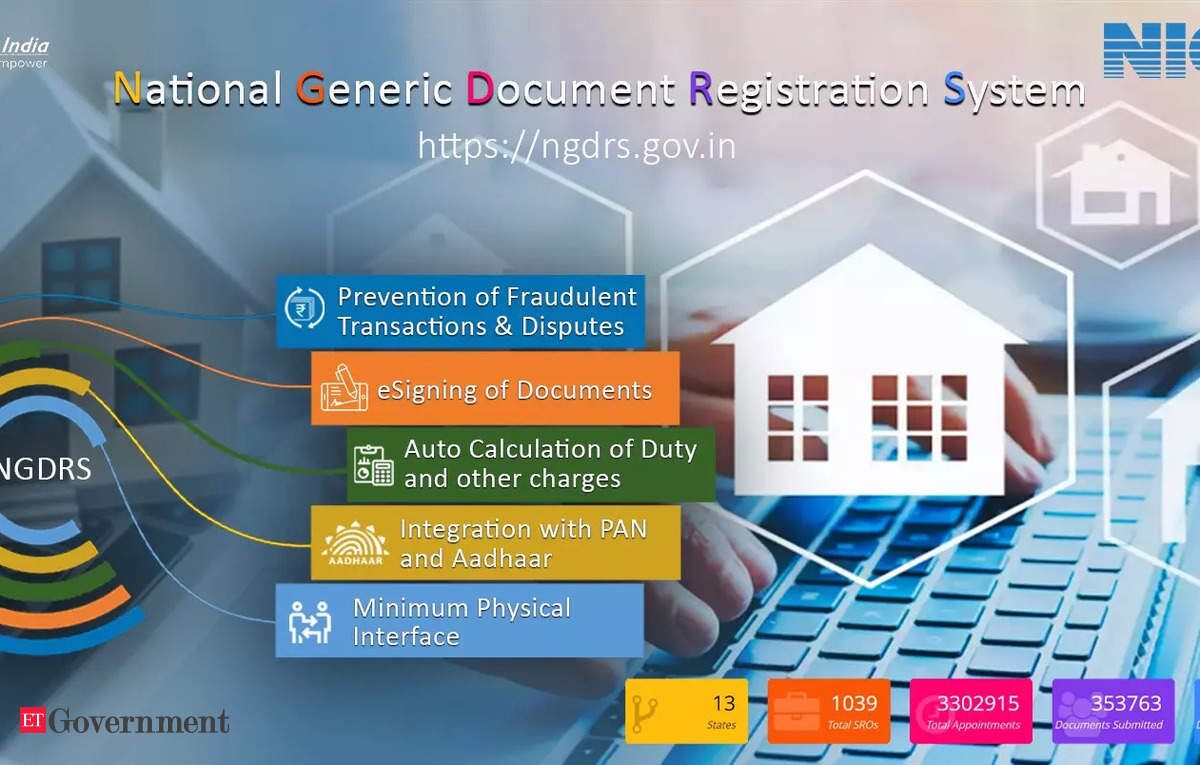
- 14 Feb 2024
Why is it in the News?
Recently, the Secretary, Department of Land Resources, rolled out the National Generic Document Registration System (NDGRS) throughout Assam along with the launch of Unique Land Parcel Identification Number (ULPIN) seeding of geo-referenced Cadastral Maps.
About National Generic Document Registration System:
- The Department of Land Resources has developed the National Generic Document Registration System (NGDRS) as part of the Digital India Land Records Modernisation Programme (DILRMP).
- As many as 28 States / UTs have adopted the NGDRS for Land Records.
- The NGDRS application is developed by the National Informatics Centre, Pune.
- It is a common, generic application developed for registration departments across the country under the One Nation One Software initiative.
Objectives of NGDRS:
- With technology being one of the major enablers, it is ensured that registrations and delivery of documents to the parties happen faster in comparison to the conventional methods. The broad level objectives are:
- One Nation One Software
- Generic platform for registration of properties and document across the country
- Citizen empowerment by enabling property valuation and online document submission
- A single platform of all the stakeholders in registration process
Features of NGDRS:
- It is a nationwide registration department application that is generic, standardised, and adaptable.
- Sub-registrars, citizens, and apex users from registration departments are the intended users of this program.
- NGDRS makes it easier for states to set up state-specific instances and customise the program to meet their needs.
- With its comprehensive user interface for document and property registration, the program makes it possible for citizens to continue with online land purchases.
- They are able to determine the circle rate for land, determine the type of land, and value properties based on current rates.
- The inability to transact in properties that are prohibited—such as government, tribal, mortgaged, etc.—helps them eventually determine where and what kind of land to purchase.
- After that, clients may schedule appointments in advance, apply online for document submission, and make quick payments.
- Purchasers of real estate only need to make one visit to the sub-registrar's office, and that should be during the final registration and signing process.
What is ULPIN?
- It is the distinct blockchain ID, and the land parcel's ULPIN from BhuNaksha allows for a unique identification.
- Every land parcel has a unique 14-digit alphanumeric identification number, often known as the AADHAR or fingerprint for land.
- The identification relies on georeferenced cadastral maps and is based on the land parcel's longitude and latitude.
- ULPIN has the following advantages: it guarantees transaction uniqueness, maintains current spatial records, connects property transactions, shares land record data across departments and financial institutions, and gets rid of fraudulent transactions.
Revised Guidelines for Community Radio Stations (ET)
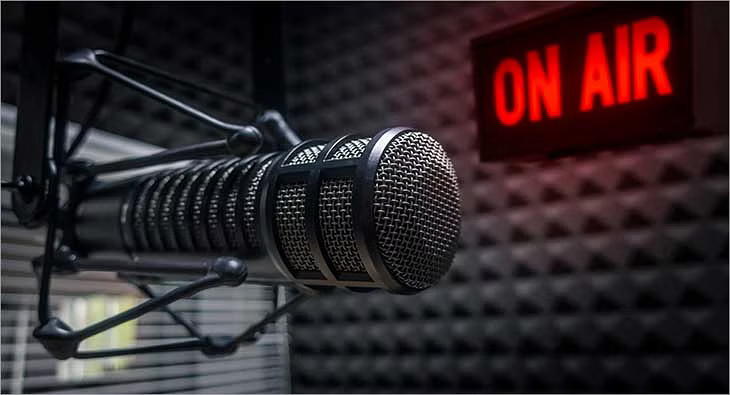
- 14 Feb 2024
Why is it in the News?
With a view to ensuring the growth of the community radio sector, the Union government on Tuesday increased the advertising time for community radio stations as well as the tariff rate for advertisements.
What are Community Radio Stations (CRSs?
- Community radio stations (CRSs) are low-power radio stations with a coverage area of approximately a 10-15 km radius, depending on the area’s geography, which is meant to be set up and operated by local communities.
- They offer a platform where content is disseminated in localized dialects and regional languages.
- Local, context-specific issues are raised and discussed in these stations in local idioms.
- India's first community radio station (CRS) was inaugurated on the campus of Anna University in 2004.
- Currently, there are 481 CRSs in India.
About the Revised Policy Guidelines:
- Under the revised policy, the government has permitted any eligible organisation functional in multiple districts to set up a maximum of six community radio stations in different districts.
- The advertising time for community radio stations has been increased from seven minutes per hour to 12 minutes per hour, while the rate of advertisement has been hiked from Rs 52 to Rs 74 per 10 seconds, the guidelines stated.
- The policy also fixed the validity of the letter of intent issued to an organisation to one year, with a buffer of three months to the applicant for any unforeseen circumstances.
- The revised policy guidelines are expected to fuel the growth of the community radio sector.
- The guidelines stated that the licensee would set up an advisory and content committee comprising members of the local community, with 50 per cent representation for women.
Atlantic Meridional Overturning Circulation (AMOC) (Earth Org)
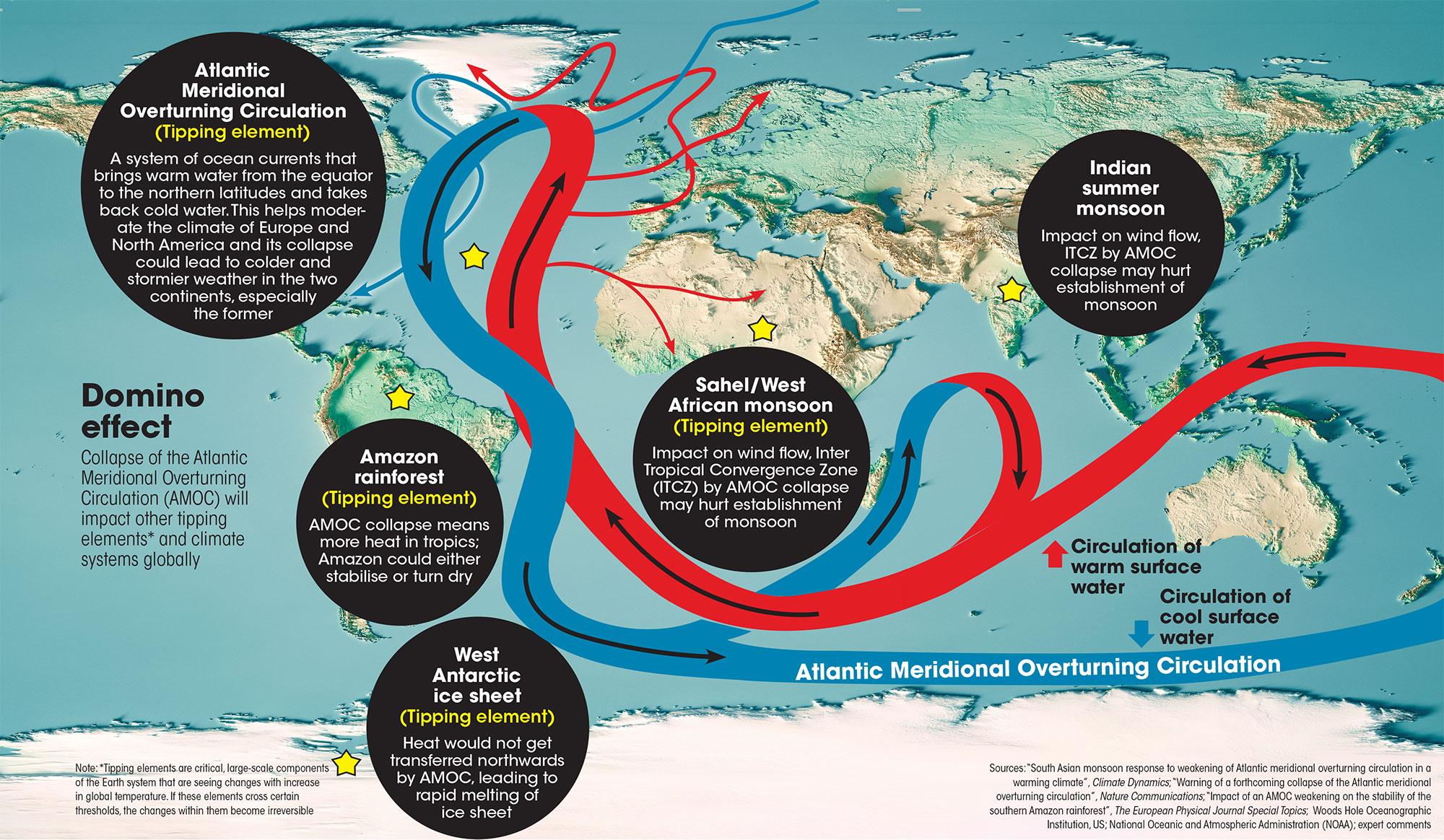
- 14 Feb 2024
Why is it in the News?
The circulation of the Atlantic Ocean, a key component in global climate regulation, is “on route” to a tipping point, according to a new study, which describes the findings as “bad news for the climate system and humanity.”
What is Atlantic Meridional Overturning Circulation (AMOC)?
- The ocean’s water is constantly circulated by currents.
- Tidal currents occur close to shore and are influenced by the sun and moon and the surface currents are influenced by the wind.
- However, other, much slower currents that occur from the surface to the seafloor are driven by changes in the saltiness and ocean temperature, a process called thermohaline circulation.
- These currents are carried in a large "global conveyor belt," which includes the AMOC.
- AMOC stands for Atlantic Meridional Overturning Circulation.
- The AMOC circulates water from north to south and back in a long cycle within the Atlantic Ocean.
- This circulation brings warmth to various parts of the globe and also carries nutrients necessary to sustain ocean life.
- The circulation process begins as warm water near the surface moves toward the poles (such as the Gulf Stream in the North Atlantic), where it cools and forms sea ice.
- As this ice forms, salt is left behind in the ocean water.
- Due to the large amount of salt in the water, it becomes denser, sinks down, and is carried southwards in the depths below.
- Eventually, the water gets pulled back up towards the surface and warms up in a process called upwelling, completing the cycle.
- The entire circulation cycle of the AMOC, and the global conveyor belt, is quite slow.
- It takes an estimated 1,000 years for a parcel (any given cubic meter) of water to complete its journey along the belt.
- Even though the whole process is slow on its own, there is some evidence that the AMOC is slowing down further.
Is the AMOC Slowing Down?
- As our climate continues to change, there is a possibility that the AMOC will slow down, or come to a complete stop.
- While research shows it is weakening over the past century, whether or not it will continue to slow or stop circulating completely remains uncertain.
- If the AMOC does continue to slow down, however, it could have far-reaching climate impacts.
- For example, if the planet continues to warm, freshwater from melting ice at the poles would shift the rain belt in South Africa, causing droughts for millions of people.
What Would Happen if AMOC Failed?
- AMOC acts as a sort of "switch" for the climate, particularly in Europe and the northern hemisphere.
- It would result in less precipitation in regions like Europe, North America, China, and certain regions of Russia in Asia, as well as widespread cooling throughout the northern hemisphere.
- The Amazon rainforest might become dry and drought-prone as a result of the extra heat brought on by a collapsing AMOC, and it might even become a savannah state.
- In certain areas, monsoon development and rainfall might be impeded by a slowing in AMOC.
- There might be less rainfall in the Sahel (the West African monsoon area), less summer monsoon circulation in South Asia and India, and more winter storms in Europe.
- The summer monsoon circulation over the Indian subcontinent and the sea level pressure gradient are both weakened by a weakening of the land-sea heat gradient.
India's retail inflation moderates to 5.10 per cent in January (The Hindu)

- 13 Feb 2024
Why is it in the News?
India's retail inflation has eased to 5.10% on an annual basis, according to data released by the Ministry of Statistics & Programme Implementation.
What is Retail Inflation or CPI-based Inflation?
- Retail inflation, also known as Consumer Price Index (CPI) inflation tracks the change in retail prices of goods and services which households purchase for their daily consumption.
- CPI is released by The National Statistical Office (NSO), Ministry of Statistics and Programme Implementation (MoSPI).
- To measure inflation, we estimate how much CPI has increased in terms of percentage change over the same period the previous year.
- If prices have fallen, it is known as deflation (negative inflation).
- The Central Bank (RBI) pays very close attention to this figure in its role of maintaining price stability in the economy.
- The CPI monitors retail prices at a certain level for a particular commodity; and price movement of goods and services at rural, urban and all-India levels.
- The change in the price index over a period of time is referred to as CPI-based inflation or retail inflation.
- Generally, CPI is used as a macroeconomic indicator of inflation, as a tool by the central bank and government for inflation targeting and for inspecting price stability, and as a deflator in the national accounts.
- CPI also helps understand the real value of salaries, wages, and pensions, the purchasing power of the nation’s currency, and regulating rates.
- CPI, one of the most important statistics to ascertain economic health, is generally based on the weighted average of the prices of commodities.
- It basically gives an idea of the cost of the standard of living.
- CPI specifically identifies periods of deflation or inflation for consumers in their day-to-day living expenses.
- If there is inflation (when goods and services cost more) the CPI will rise over a period of time.
- If the CPI drops, that means there is deflation or a steady reduction in the prices of goods and services.
How is CPI calculated (CPI formula)?
- To calculate CPI, multiply 100 by the fraction of the cost price of the current period and the base period.
- CPI formula: (Price of the basket in current period / Price of the basket in base period) x 100
New Education Policy Taking Forward Swami Dayanand’s Vision (Indian Express)
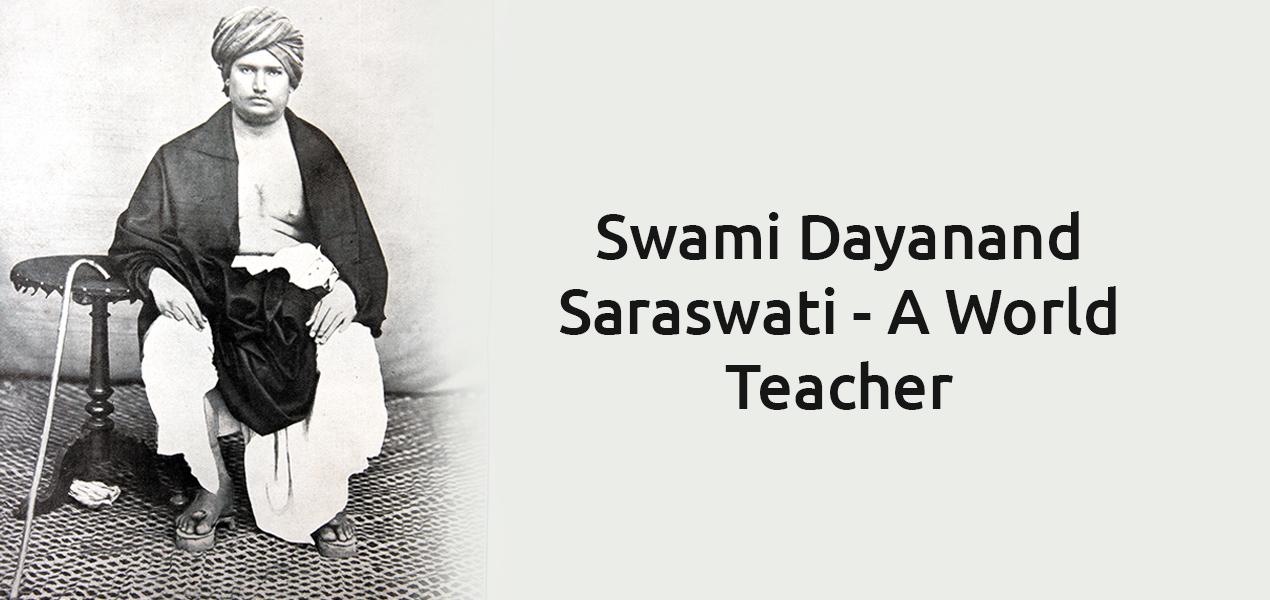
- 12 Feb 2024
Why is it in the News?
The National Education Policy 2020 is taking forward the vision of social reformer Swami Dayanand Saraswati, Prime Minister Narendra Modi said recently.
Who was Maharishi Dayanand Saraswati?
- Maharishi Dayanand Saraswati, born on February 12, 1824, in Tankara, Gujarat, was a pioneering social reformer.
- He established the Arya Samaj in 1875 with the aim of addressing prevailing social injustices.
Religious and Social Reforms:
- Rejection of Idolatry and Ritualism: Dayanand Saraswati staunchly opposed idol worship and ritualistic practices, advocating instead for the worship of a formless, attributeless God as outlined in the Vedas.
- Shuddhi Movement: He initiated the Shuddhi Movement to reclaim individuals who had converted to religions like Islam or Christianity, aiming to reintegrate them into Hinduism.
- Back to Vedas: Recognizing the importance of Vedic wisdom, he spearheaded a movement to revive the teachings of the Vedas, emphasizing their relevance in modern society.
- Women’s Rights: Dayanand Saraswati championed women’s rights, advocating for their education and equal participation in social and religious spheres alongside men.
- Opposition to Child Marriage and Sati: He vehemently opposed practices like child marriage and sati, viewing them as detrimental to society and antithetical to Vedic principles.
Educational Reforms:
- Dayanand Saraswati established several Gurukuls to impart Vedic knowledge to his followers and empower them to disseminate this wisdom further.
- Influenced by his philosophy and vision, his disciples founded the Dayanand Anglo Vedic (DAV) College Trust and Management Society following his demise in 1883.
- The first DAV High School was founded in Lahore on June 1, 1886, under the leadership of Mahatma Hans Raj.
Literary Contributions:
- Dayanand Saraswati's philosophical ideas are encapsulated in his notable works like "Satyartha Prakash" and "Veda Bhashya," shedding light on his vision for Hindu reform.
- His thoughts were further disseminated through the journal "Arya Patrika," which he edited, reflecting his philosophical convictions.
Arya Samaj:
- Founded by Dayanand Saraswati in Bombay in 1875, the Arya Samaj, meaning "society of the nobles," aimed to reform Hinduism by steering it away from superstition.
- With the motto "Krinvanto Vishwam Aryam" meaning "Make this world noble," the Samaj advocated for a return to the true essence of Hinduism, rejecting ritualistic practices like idol worship, pilgrimage, and animal sacrifice.
- In the 1880s, the Samaj actively supported widow remarriage, promoting social reforms aligned with its principles.
- The Arya Samaj's influence extends beyond India, with active branches worldwide.
Monetary Policy Committee (MPC) of RBI (The Hindu)
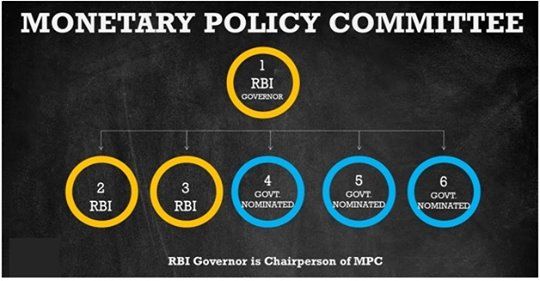
- 10 Feb 2024
Why is it in the News?
The RBI’s Monetary Policy Committee (MPC) has prudently opted to persist with its objective of ‘ensuring that inflation progressively aligns to the target’ by keeping benchmark interest rates unchanged, and sticking with its stance of ‘withdrawal of accommodation’.
About the Monetary Policy Committee (MPC):
- The Monetary Policy Committee (MPC) is a committee of the Reserve Bank of India (RBI), chaired by its Governor.
- The RBI shall organise at least four meetings of the Monetary Policy Committee in a year.
- Established under Section 45ZB of the RBI Act, 1934, the government forms this six-member committee.
Composition of MPC:
- Comprising six members, three are from the RBI, while the remaining members are appointed by the Government of India.
- Members include the RBI Governor (Chairperson), the RBI Deputy Governor responsible for monetary policy, one official nominated by the RBI Board, and three members proposed by the Government of India (chaired by the Cabinet Secretary).
- MPC members serve a single four-year term and are not eligible for reappointment.
Functions:
- The primary responsibility of the MPC is to determine the benchmark policy interest rate (repo rate) to manage inflation within the prescribed target level.
- The current mandate of the committee is to maintain annual consumer price index (CPI) inflation at 4% within a band of +/- 2% until March 31, 2026.
Preamble to the Constitution of India (Indian Express)
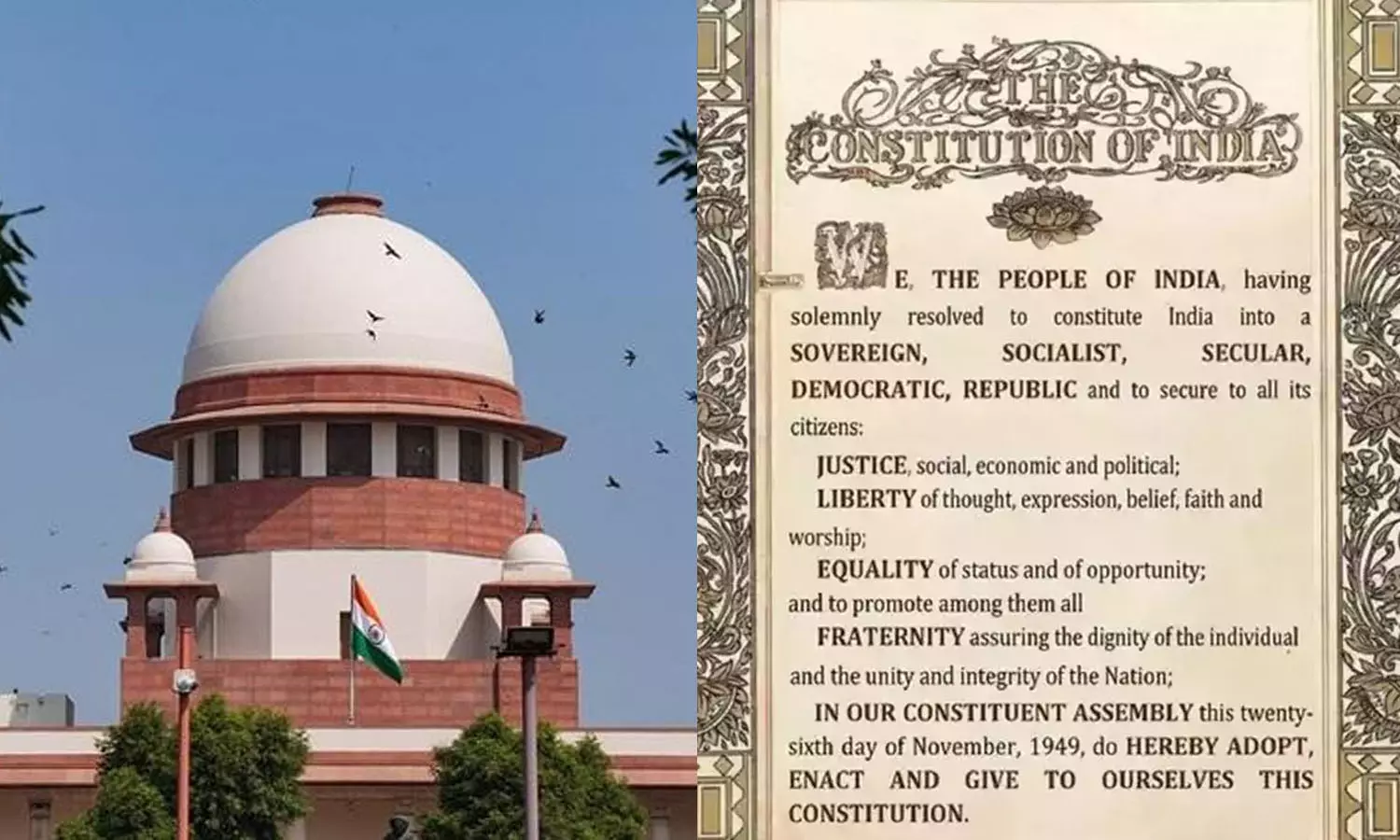
- 10 Feb 2024
Why is it in the News?
The Supreme Court recently wondered if the Preamble to the Constitution could have been amended while retaining the date when the Constitution was adopted.
Background:
- In historical context, the Preamble underwent a solitary amendment in December 1976 via the 42nd Constitutional Amendment during the Indira Gandhi Government.
- This amendment introduced two modifications: replacing "unity of the nation" with "unity and integrity of the nation," and inserting "socialist" and "secular" between "sovereign" and "democratic."
- Initially, the Preamble described India as a "sovereign, democratic republic."
- Notably, the Supreme Court affirmed in the Kesavananda Bharati case that the Preamble constitutes an integral component of the Constitution, subject to Parliament's amending authority, provided the fundamental structure remains intact.
About the Preamble of the Indian Constitution:
- The Preamble to the Constitution of India draws inspiration primarily from the 'Objective Resolution' penned by Jawaharlal Nehru in 1946.
- It serves as a concise introduction, outlining the foundational principles and aspirations of the nation. Key components include:
- Source of Constitutional Authority: It affirms that the Constitution derives its authority from the people of India.
- Nature of the Indian State: It declares India as a Sovereign, Socialist, Secular, Democratic, and Republican Polity.
- Objectives of the Constitution: It articulates Justice, Liberty, Equality, and Fraternity as the core objectives.
- Adoption Date: It designates November 26, 1949, as the date of adoption.
- Significance:
- Acts as a guiding framework for interpreting the Constitution and formulating laws.
- Defines the national aspirations and goals.
- Highlights the importance of fundamental rights and values for all citizens.
- Fosters a sense of national unity and identity.
Is the Preamble a Part of the Constitution of India?
- In the Berubari Union Case of 1960, the Supreme Court stated that the Preamble is not a formal part of the Constitution.
- However, it acknowledged that the Preamble provides insight into the intentions of the Constitution makers, thus aiding in interpreting any ambiguities within the Constitution.
- The Kesavananda Bharati Case of 1973 marked a reversal of this stance.
- The Supreme Court declared the Preamble as an intrinsic part of the Constitution, attributing it significant interpretive value.
- It emphasized that the Preamble plays a crucial role in understanding the spirit and objectives of the Constitution, guiding the interpretation of its provisions.
- In the LIC of India Case of 1995, the Supreme Court reiterated that the Preamble is indeed an integral component of the Constitution.
- However, it clarified that while the Preamble holds symbolic importance and helps in understanding the Constitution's essence, it cannot be directly enforced as a law in Indian courts.
Can the Preamble be Amended?
- An essential debate revolves around whether the Preamble can undergo amendments under Article 368.
- In the Kesavananda Bharati Case of 1973, the Supreme Court established that the Preamble constitutes a fundamental aspect of the Constitution and is therefore amenable to amendments.
- However, any such amendment must adhere to the principle that the 'Basic Structure' of the Constitution remains untouched.
Support to Students for Participating in Competitions Abroad (SSPCA) Initiative (India Today)

- 08 Feb 2024
Why is it in the News?
The All India Council for Technical Education (AICTE) recently introduced a scheme named 'Support to Students for Participating in Competitions Abroad' (SSPCA).
About the Support to Students for Participating in Competitions Abroad (SSPCA) Initiative:
- The SSPCA Initiative, spearheaded by the All India Council for Technical Education (AICTE), aims to enhance the global competitiveness of Indian students in technical education.
- Crafted to provide financial backing to students aspiring to excel in international scientific events, the initiative offers a comprehensive support system.
Financial Assistance and Mentorship:
- Under the SSPCA scheme, individual students or student teams can avail themselves of travel grants to engage in international competitions.
- This assistance encompasses financial aid, mentorship, logistical support, and networking opportunities, empowering students to effectively represent India on the global stage.
- Financial aid extended by the AICTE scheme amounts to up to Rs 2 lakh per student, covering various expenses such as international and domestic travel, registration fees, visa applications, accommodation, airport taxes, travel insurance, and equipment costs associated with the competition.
Eligibility:
- Eligibility for the SSPCA initiative extends to students enrolled in diploma, B.E./B. Tech, integrated M. Tech, and M./M. Tech programs in AICTE-approved institutions.
- Each team of students is entitled to financial support under the scheme once during the course of their study.
About the All India Council for Technical Education (AICTE):
- Established as the statutory body and national-level council for technical education in India, the AICTE has played a pivotal role in shaping the landscape of technical education in the country.
- Founded in 1945 as an advisory body, it gained statutory status through an Act of Parliament in 1987.
Functions:
- The AICTE is responsible for granting approval for the establishment of new technical institutions, the introduction of new courses, and variations in intake capacity.
- It sets and upholds norms and standards for technical institutions to ensure quality development.
- Additionally, the AICTE promotes technical education through various schemes aimed at fostering innovation, faculty development, research and development, and inclusivity for women, the handicapped, and marginalized sections of society.
- Technical institutions under the AICTE's purview encompass a wide array of programs, including post-graduate, undergraduate, and diploma courses across multiple disciplines.
- Headquartered in New Delhi, the AICTE continues to be at the forefront of advancing technical education and innovation in India.
Pradhan Mantri Bhartiya Jan Aushadhi Kendras (PIB)
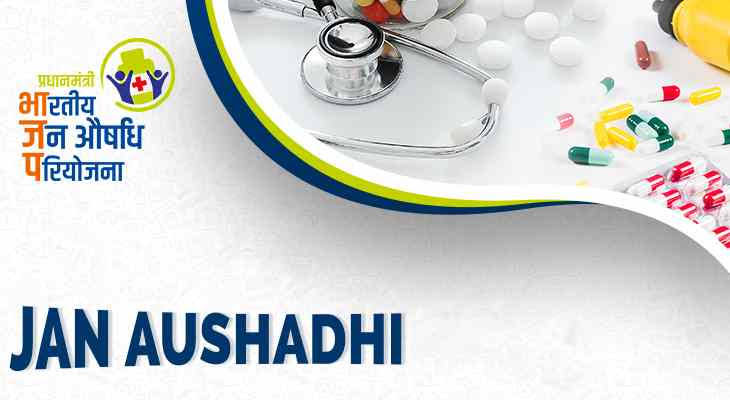
- 07 Feb 2024
Why is it in the News
PACS have been allowed by the Government to operate Pradhan Mantri Bhartiya Jan Aushadhi Kendras (PMBJK) under the Pradhan Mantri Bhartiya Jan Aushadhi Pariyojana of Department of Pharmaceuticals, Ministry of Chemicals and Fertilizers (GOI).
About Pradhan Mantri Bhartiya Jan Aushadhi Kendras:
- Pradhan Mantri Bhartiya Jan Aushadhi Kendras are established as part of the Pradhan Mantri Bhartiya Janaushadhi Pariyojana, initiated by the Department of Pharmaceuticals, Ministry of Chemicals and Fertilisers in November 2008.
Objective:
- The primary objective is to ensure the availability of quality medicines at affordable prices for all segments of society, particularly the economically disadvantaged, thereby reducing out-of-pocket healthcare expenses.
- These Kendras offer generic drugs that are equivalent in quality and efficacy to expensive branded drugs but are available at significantly lower prices.
- All essential therapeutic medicines are stocked in Jan Aushadhi Stores, along with allied medical products commonly found in chemist shops, enhancing the viability of operating a Jan Aushadhi store.
- The Pharmaceutical & Medical Devices Bureau of India (PMBI), established under the Department of Pharmaceuticals, Government of India, with the support of all Central Public Sector Undertakings (CPSUs), coordinates the procurement, supply, and marketing of generic drugs through the PMBKs.
Eligibility to Open a Jan Aushadhi Kendra:
- State Governments, reputable NGOs, trusts, private hospitals, charitable institutions, doctors, unemployed pharmacists, and individual entrepreneurs are eligible to apply for establishing a new Jan Aushadhi Kendra.
- Applicants are required to employ a Bachelor of Pharmacy (B Pharma) or Diploma in Pharmacy (D Pharma) degree holder as a pharmacist in their proposed store.
Water (Prevention and Control of Pollution) Amendment Bill, 2024 (Indian Express)
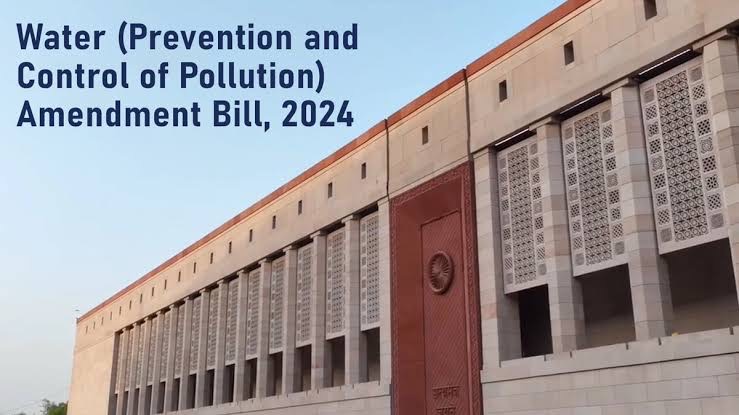
- 06 Feb 2024
Why is it in the News?
The Centre on Monday introduced a Bill that would enable it to prescribe the norms for nominating chairpersons of State Pollution Control Boards, exempt certain industrial units from restrictions, and decriminalize “minor offenses” related to water pollution.
News Summary:
- The Water (Prevention and Control of Pollution) Amendment Bill, 2024 has been introduced in the Rajya Sabha.
- It is applicable to Himachal Pradesh and Rajasthan, with the potential to extend to other states through resolutions under the Water (Prevention and Control of Pollution) Act, 1974.
- The Bill empowers the Centre to exempt certain industrial plants from restrictions and issue guidelines related to industry establishment.
About Water (Prevention and Control of Pollution) Amendment Bill, 2024:
- Enacted in 1974, the Water (Prevention and Control of Pollution) Act aimed to prevent and control water pollution, establishing penal provisions for non-compliance.
Rationale for the Amendment:
- The Amendment Bill underscores the importance of democratic governance, emphasizing trust in people and institutions. It addresses the outdated regulations leading to a trust deficit.
Key Amendments Proposed:
- The Amendment Bill seeks to modernize the existing penal provisions, replacing imprisonment with fines for minor violations. This move aligns with the principles of Ease of Living and Ease of Doing Business.
Major Features of the Amendment Bill:
- The Bill proposes several key changes, including:
- Prescribing the process for nominating the chairman of the State Pollution Control Board by the Central Government.
- Granting the Central government authority to exempt certain industrial plants from restrictions on new outlets and discharges.
- Issuing guidelines on matters related to the establishment of industries by the Central government.
- Decriminalizing minor offenses and substituting them with monetary penalties.
- Specifying the adjudication process for penalties by officers of appropriate rank.
- Outlining penalties for non-compliance with regulations regarding new outlets, discharges, and sewage.
- Allocation of penalty amounts to the Environmental Protection Fund established under the Environment (Protection) Act, 1986.
GHAR (GO Home and Re-Unite) Portal for Restoration and Repatriation of Child (PIB)
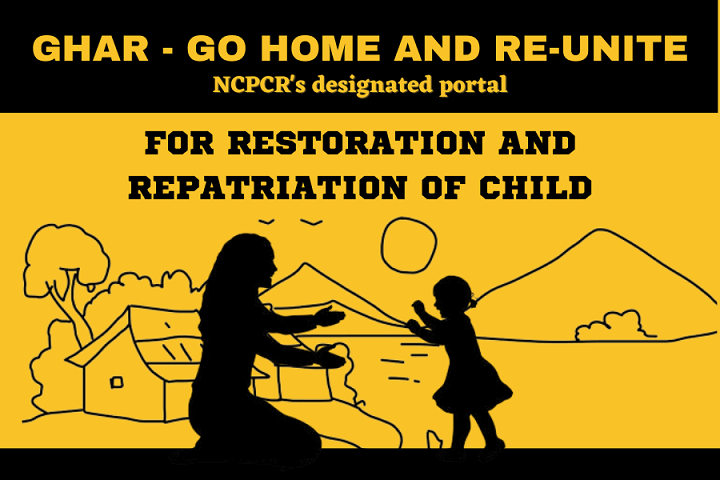
- 03 Feb 2024
Why is it in the News?
The Ministry of Women and Child Development developed the “Track Child Portal”, which enables tracking of the missing and found children in all States/UTs including Maharashtra, Chhattisgarh, North Eastern States and Jharkhand.
What is the GHAR Portal?
- National Commission for Protection of Child Rights (NCPCR) has developed and launched the portal GHAR - Go Home and Reunite, with the sole purpose of restoration and repatriation of children.
- The GHAR portal has been developed to digitally monitor and track the restoration and repatriation of children.
- Here's how the portal can help strayed children go home and reunite with their families:
- The portal digitally tracks and monitors children who are in the juvenile justice system and have to be repatriated to another country, state or district.
- It allows the digital transfer of cases of children to the Juvenile Justice Board/Child Welfare Committee of the state concerned.
- It will help in speedy repatriation of children.
- Where there is a requirement for a translator/interpreter/expert, a request will be sent to the state government concerned.
- Child welfare committees and district child protection officers can ensure proper restoration and rehabilitation of children by digitally monitoring the progress of the case of the child.
- A checklist format will be provided in the forms so that the children who are being hard to repatriate or children who are not getting their entitled compensation or other monetary benefits can be identified.
- A list of government-implemented schemes will be provided so that at the time of restoration the Child Welfare Committees can link the child with the schemes to strengthen the family and ensure that the child remains with his/her family.
- The Ministry of Women and Child Development is administering the Juvenile Justice (Care and Protection of Children) Act, 2015 (JJ Act, 2015) (as amended in 2021) and the Rules thereunder, to ensure the safety, security, dignity and well-being of children.
- The Act provides for the protection of children in need of care and protection and those in conflict with the law by catering to their basic needs through care, protection, development, treatment and social reintegration.
- Under the JJ Act, 2015, the Child Welfare Committees have been empowered to make decisions regarding the children in need of care and protection for the children’s best interest.
- They are also mandated to monitor the functioning of the Child Care Institutions (CCIs).
- Similarly, under section 106 of the JJ Act, 2015, every state government has to constitute a District Child Protection Unit (DCPU) for every district to take up matters relating to children to ensure the implementation of the JJ Act, 2015 and its rules thereunder.
- To ensure effective coordination in child safety, protection and development, District Magistrates have been made the heads of DCPUs.
- DMs have been empowered to review the functioning of DCPUs and CWCs at regular intervals to ensure prompt decisions as per provisions of the JJ Act and Rules are taken by these bodies, keeping in mind the best interests of the children.
: Law Commission of India (Indian Express)
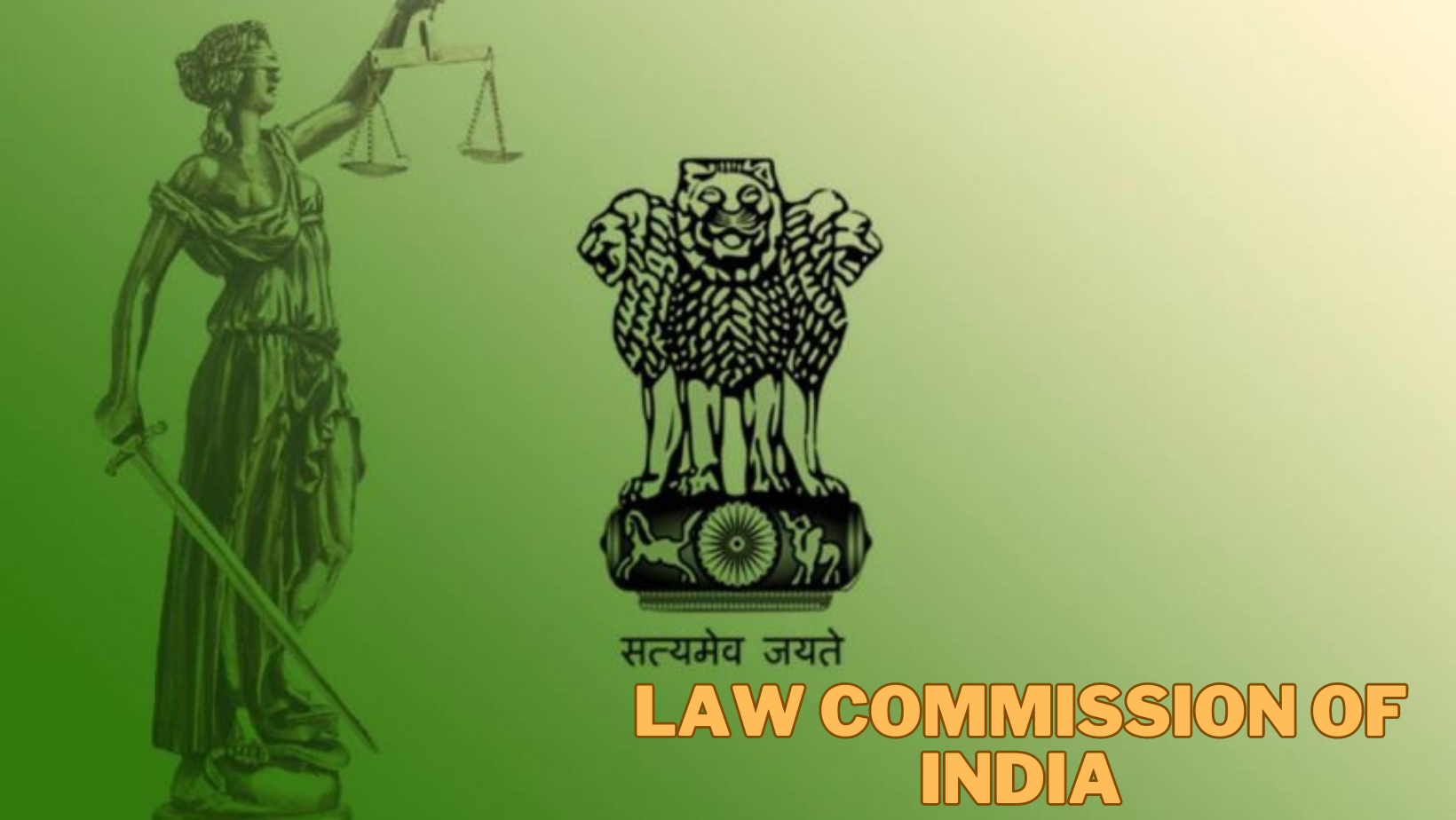
- 03 Feb 2024
Why is it in the News?
The 22nd Law Commission of India led by Justice Ritu Raj Awasthi has recommended that the offense of criminal defamation should be retained in the new criminal laws.
About the Law Commission of India:
- The Law Commission of India is a non-statutory body, constituted by the Government of India from time to time.
- The commission's function is to research and advise the government on legal reform, and is composed of legal experts, and headed by a retired judge.
- The commission is established for a fixed tenure and works as an advisory body to the Ministry of Law and Justice.
- The first Law Commission was established during colonial rule in India by the East India Company under the Charter Act of 1833 and was presided over by Lord Macaulay.
- After that, three more commissions were established in British India.
- The first Law Commission of independent India was established in 1955 for a three-year term.
- Since then, twenty-one more commissions have been established.
- The 22nd Law Commission has been notified with effect from 21st February 2020 for a term of 3 years.
- Cabinet approves the extension of the term of the 22nd Law Commission of India up to 31st August 2024.
- Justice Rituraj Awasthi (Former Chief Justice of the Karnataka HC) was appointed as the chairperson of the current 22nd Law Commission.
- The last chairman of the 21st Law Commission was retired Supreme Court judge Justice B.S. Chauhan.
The Responsibilities of the Law Commission:
- Identification of laws which are no longer relevant and recommending the repeal of obsolete and unnecessary enactments;
- Suggesting enactment of new legislations as may be necessary to implement the Directive Principles and to attain the objectives set out in the Preamble of the Constitution;
- Considering and conveying to the Government its views on any subject relating to law and judicial administration that may be specifically referred to it by the Government through the Ministry of Law & Justice (Department of Legal Affairs);
- Considering the requests for providing research to any foreign countries as may be referred to it by the Government through the Ministry of Law & Justice (Department of Legal Affairs);
- Preparing and submitting to the Central Government, from time to time, reports on all issues, matters, studies and research undertaken by it and recommending such reports for effective measures to be taken by the Union or any State; and
- Performing such other functions as may be assigned to it by the Central Government from time to time.
Improved Fiscal Resilience Amid Modest Tax Buoyancy (Indian Express)
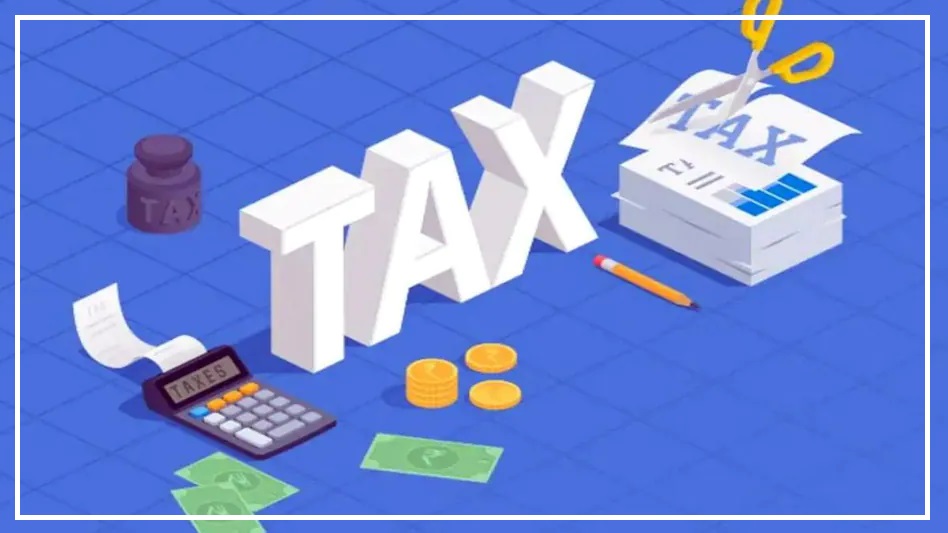
- 02 Feb 2024
Why is it in the News?
The government’s aim to restrict the fiscal deficit to 5.8 per cent of the Gross Domestic Product (GDP) as against 5.9 per cent budgeted earlier for the financial year and the push to restrict the fiscal deficit target to below 4.5 per cent by 2025-26 rides on the back of a strong buoyancy in tax revenues.
What is Tax Buoyancy?
- Tax buoyancy elucidates the correlation between fluctuations in government tax revenue growth and changes in Gross Domestic Product (GDP).
- This concept underscores the intrinsic link between the government's tax earnings and economic expansion.
- Essentially, as the economy accelerates, government tax revenue experiences a corresponding increase.
- Tax buoyancy delineates the responsiveness of tax revenue growth to alterations in GDP, signifying its sensitivity to economic fluctuations.
- A buoyant tax exhibits a revenue surge without necessitating a rise in tax rates, contingent upon factors such as the tax base's magnitude, tax administration efficiency, and the simplicity and rationality of tax structures.
- Typically, direct taxes demonstrate higher buoyancy, being more responsive to GDP growth rates.
What is Tax Elasticity?
- Tax elasticity, akin to tax buoyancy, refers to variations in tax revenue consequent to changes in tax rates.
- For instance, assessing how tax revenue fluctuates when the government reduces corporate income tax from 30 percent to 25 percent illustrates tax elasticity.
- This concept underscores the dynamic relationship between tax rates and revenue generation, reflecting the degree of responsiveness of tax revenue to alterations in tax rates.
About the Laffer Curve:
- The Laffer Curve, pioneered by economist Arthur Laffer in 1974, illustrates the interplay between tax rates and government tax revenue collection.
- This economic theory posits that tax rates exceeding a certain threshold diminish tax revenue by disincentivizing workforce participation.
- It suggests the existence of an optimal tax rate that maximizes total tax revenue.
- By visually depicting the inverse relationship between tax rates and tax revenue, the Laffer Curve highlights the complexities of tax policy and the importance of balancing tax rates to achieve revenue optimization.
Blue Economy 2.0 (Indian Express)
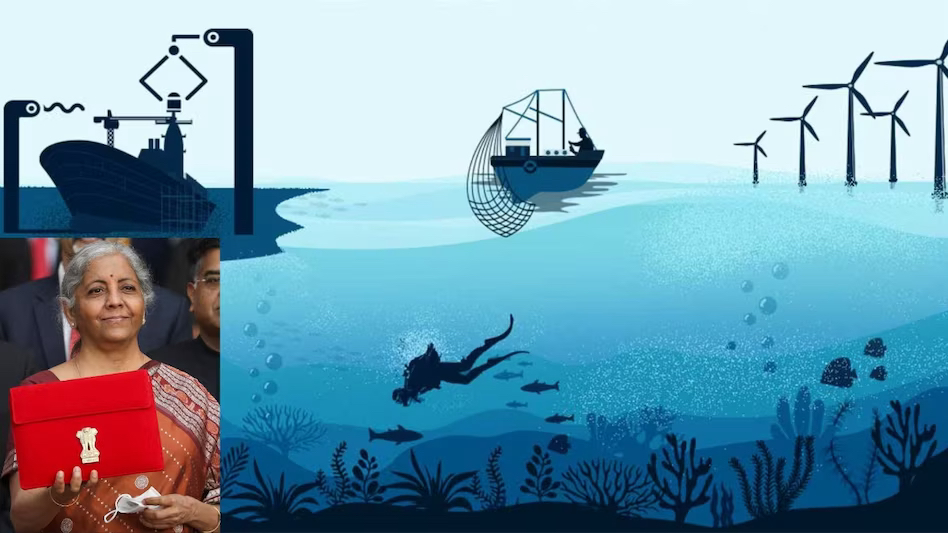
- 01 Feb 2024
Why is it in the News?
The Interim Budget presented by Finance Minister Nirmala Sitharaman on (February 1) stressed environment-friendly development through the promotion of a ‘blue economy’.
What are the Proposals in the Interim Budget Regarding the Blue Economy?
- Finance Minister Nirmala Sitharaman announced plans to launch a scheme focusing on restoration, adaptation measures, coastal aquaculture, and mariculture, adopting an integrated and multi-sectoral approach.
- Restoration and adaptation measures aim to preserve ocean health during economic activities, while aquaculture involves farming aquatic plants and animals, and mariculture focuses on rearing marine creatures in saltwater.
- Additionally, five integrated aqua parks will be established, and the Pradhan Mantri Matsya Sampada Yojana (PMMSY) will be strengthened to increase aquaculture productivity, double exports to Rs 1 lakh crore, and create 55 lakh employment opportunities in the near future.
What is the Blue Economy?
- While the term blue economy can simply refer to economic activities related to the sea and the coasts, it is generally understood to have an element of sustainability in it.
- Thus, the European Commission defines it as “all economic activities related to oceans, seas and coasts.
- It covers a wide range of interlinked established and emerging sectors”; the World Bank says the blue economy is the “sustainable use of ocean resources for economic growth, improved livelihoods, and jobs while preserving the health of ocean ecosystems.”
- For a country like India, with a long coastline, diversity in terms of fish and other ocean produce, and multiple tourism opportunities, the blue economy is highly significant.
Does India Have a Blue Economy Policy?
- The blue economy 2.0. a draft policy framework on India’s Blue Economy was first released in July 2022.
- The policy document contained “key recommendations on National Accounting Framework for Blue Economy and Ocean Governance, Coastal Marine Spatial Planning and Tourism Priority, Marine Fisheries, Aquaculture and Fish Processing.
- Manufacturing, Emerging Industries, Trade, Technology, Services and Skill Development, Logistics, Infrastructure and Shipping, Coastal and Deep-Sea Mining and Offshore Energy and Security, Strategic Dimensions and International Engagement.”
- When the G20 summit was hosted in New Delhi under India’s presidency, the Comptroller & Auditor General of India (CAG) chaired the Engagement Group for Supreme Audit Institutions (SAls) of the member countries in June 2023. Two priorities for the SAI20 deliberations were blue economy and responsible Artificial Intelligence.
India Ranks 93 on Corruption Perceptions Index 2023 (The Hindu)
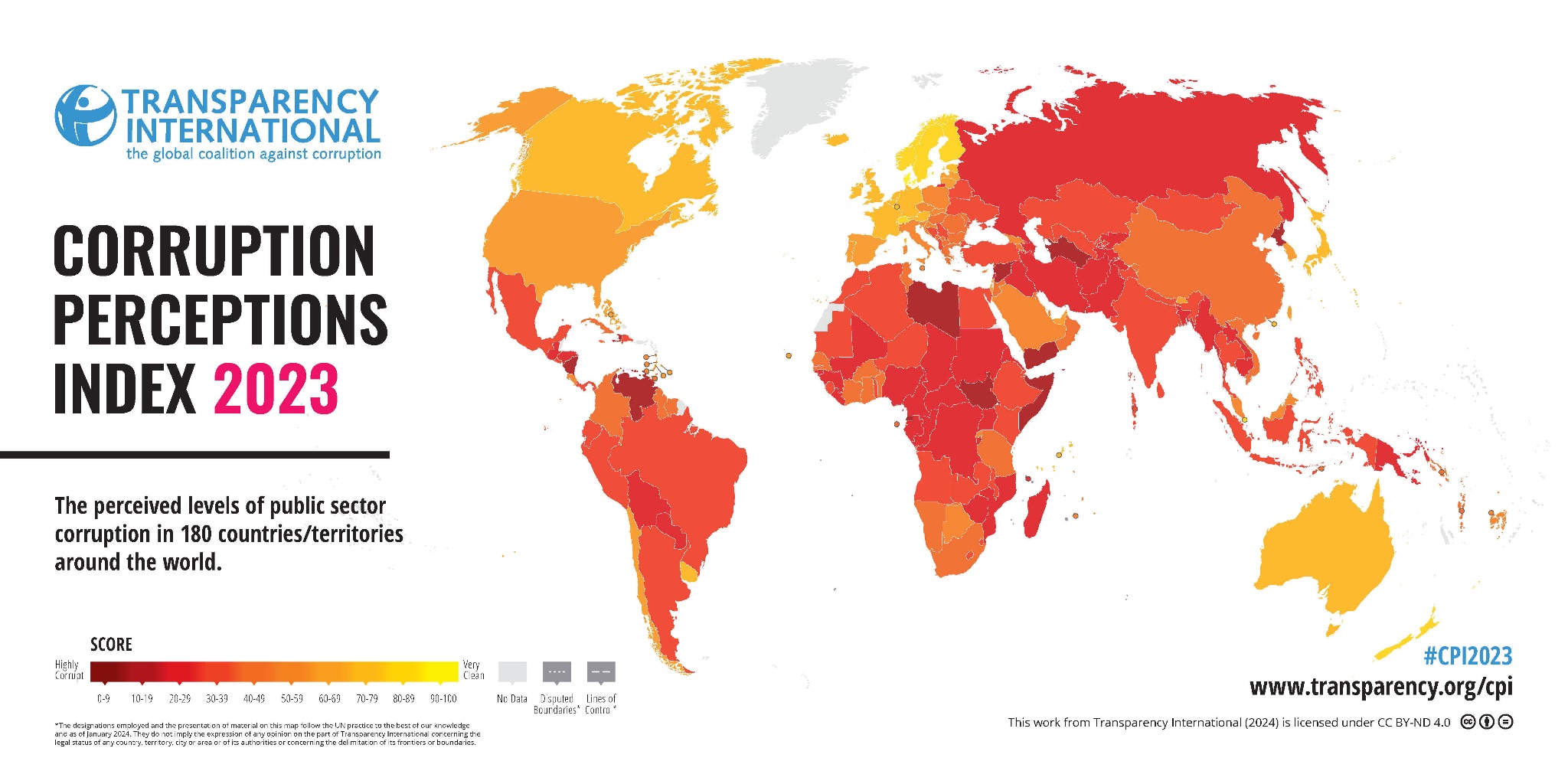
- 31 Jan 2024
Why is it in the News?
India ranked 93 out of 180 countries on the corruption perceptions index for 2023 as its overall score remained largely unchanged, according to a Transparency International report.
Key Facts About Corruption Perceptions Index 2023:
- India ranked 93 out of 180 countries on the corruption perceptions index for 2023 tied with Maldives, Kazakhstan, and Lesotho also ranking at 93 out of 180 countries.
- In 2023, India's overall score was 39 while in 2022, it was 40.
- India's rank in 2022 was 85.
- Denmark (90) tops the index for the sixth consecutive year, with Finland and New Zealand.
- In South Asia, both Pakistan (133) and Sri Lanka (115) grapple with their respective debt burdens and ensuing political instability.
- Bangladesh (149) emerges from the least developed country (LDC) status, with economic growth supporting a continued reduction in poverty and improving living conditions.
- China (76), with its aggressive anti-corruption crackdown, has punished more than 3.7 million public officials for corruption over the last decade.
- Somalia (11), Venezuela (13), Syria (13), South Sudan (13) and Yemen (16) take the bottom spots in the index.
What is the Corruption Perceptions Index (CPI)?
- The Corruption Perceptions Index (CPI) scores and ranks countries/territories based on how corrupt a country’s public sector is perceived to be by experts and business executives.
- It is a composite index, a combination of 13 surveys and assessments of corruption, collected by a variety of reputable institutions including the World Bank, World Economic Forum, private risk and consulting companies, think tanks and others.
- The CPI ranks 180 countries and the results are given on a scale of 0 (highly corrupt) to 100 (very clean).
- The CPI is released annually by Transparency International, an independent nonprofit organization that aims to fight corruption, especially in the public sector.
- Transparency International is a global independent, nongovernmental nonprofit organization (NPO) that aims to stop corruption by promoting transparency in various sectors of society.
- The organization's international secretariat is located in Berlin and it has national chapters in more than 100 countries.
- The agency is funded through donations from governments, individuals, private donors, and other organizations.
- The organisation conducts research, and advocacy work, and undergoes various projects in its fight against corruption.
- In 1995, the organization created the first Corruption Perceptions Index, ranking 45 countries based on how much corruption they were perceived to have in the public sector.
Economic Impact of Corruption:
- Corruption continues to be a big hurdle to political, economic, and social development.
- Those who are economically challenged are the most affected by the effects of corruption and related fraud.
- That's because they often rely heavily on public services and can't afford to pay bribes.
- The International Finance Corporation also cites increases in the cost of business as a result of corruption.
Eravikulam National Park to Close From February 1 for Nilgiri Tahr Breeding Season (The Hindu)
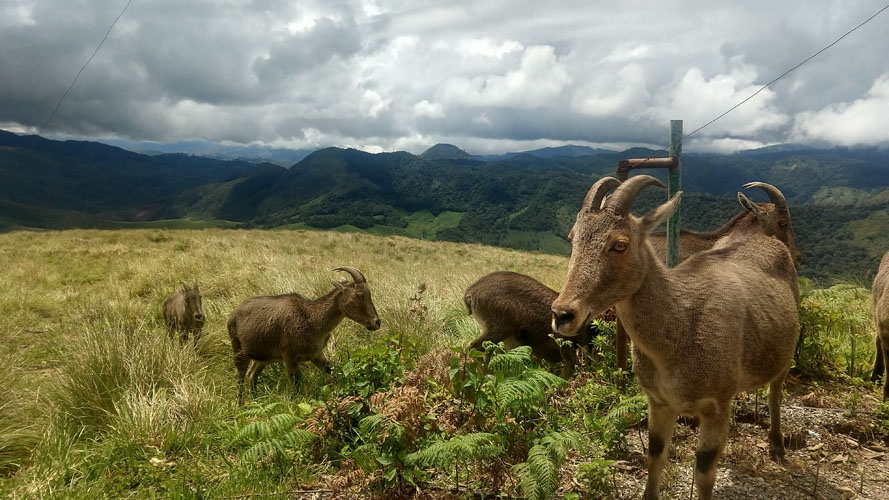
- 31 Jan 2024
Why is it in the News?
The Eravikulam National Park (ENP), the natural habitat of the Nilgiri tahr, will be closed for the calving season of the species from February 1 to March 31.
About Eravikulam National Park:
- Eravikulam National Park also known as Rajamala National Park, is located in Kerala's Idukki district.
- The park is administered under the Kerala Forest and Wildlife Department and became a National park in 1978.
- It is a 97 km2 national park located along the Western Ghats, Kerala.
- Anamudi, the highest peak in south India was located on the southern side of the park.
- This is also the land of "Neelakurinji", a flower that blooms once in twelve years.
- Wildlife in the Park: The park holds the maximum viable population of the endangered Nilgiri Tahr including other little-known fauna Nilgiri marten, ruddy mongoose, small clawed otter, dusky striped squirrel etc.
- Flora: Important flora includes Microtropis ramiflora, Actinodaphne bourdilloni, Pittosporum tetraspermium, Chrysopogon Zelanieus, Strobilanthus Kunthianus (Neela Kurinji) etc.
- Mostly the park is busted with rolling grasslands, but several patches of shola forests are also found in the upper part of the valley.
- The shola grasslands are exceptionally rich in balsams and orchids including the long thought extinct variety Brachycorythis wightii.
- The Atlas moth, the largest of its kind in the world, is seen in this park.
Key Facts about Nilgiri Tahr:
- Nilgiri Tahr is a rare mountain animal found only in the southern part of the Western Ghats.
- Scientific Name: Nilgiritragus hylocrius
- Local Name: Varayaadu
- They are famous for their ability to climb steep cliffs, which has earned them the nickname Mountain Monarch.
- It is the official state animal of Tamil Nadu.
- Distribution: Nilgiri Tahrs are mainly found in Kerala and Tamil Nadu, covering only about 5% of the Western Ghats.
- Eravikulam National Park in Kerala is home to the largest population of Nilgiri Tahrs.
- Habitat: They live in open grasslands at elevations between 1200 and 2600 meters in the South Western Ghats.
- Characteristics: Nilgiri Tahrs have a sturdy body with short, coarse fur and a rough mane.
- Both males and females have curved horns, with males having larger horns, up to 40 cm long.
- Adult males have a light grey area on their backs, known as a 'saddle,' hence the name 'saddlebacks.'
- They have a short grey-brown or dark coat.
- Conservation Status:
- IUCN Red List: Endangered
- Protected under the Wildlife (Protection) Act of India, 1972: Schedule I
Employer Rating Survey to Assess Women Participation in Workforce (Business Standard)
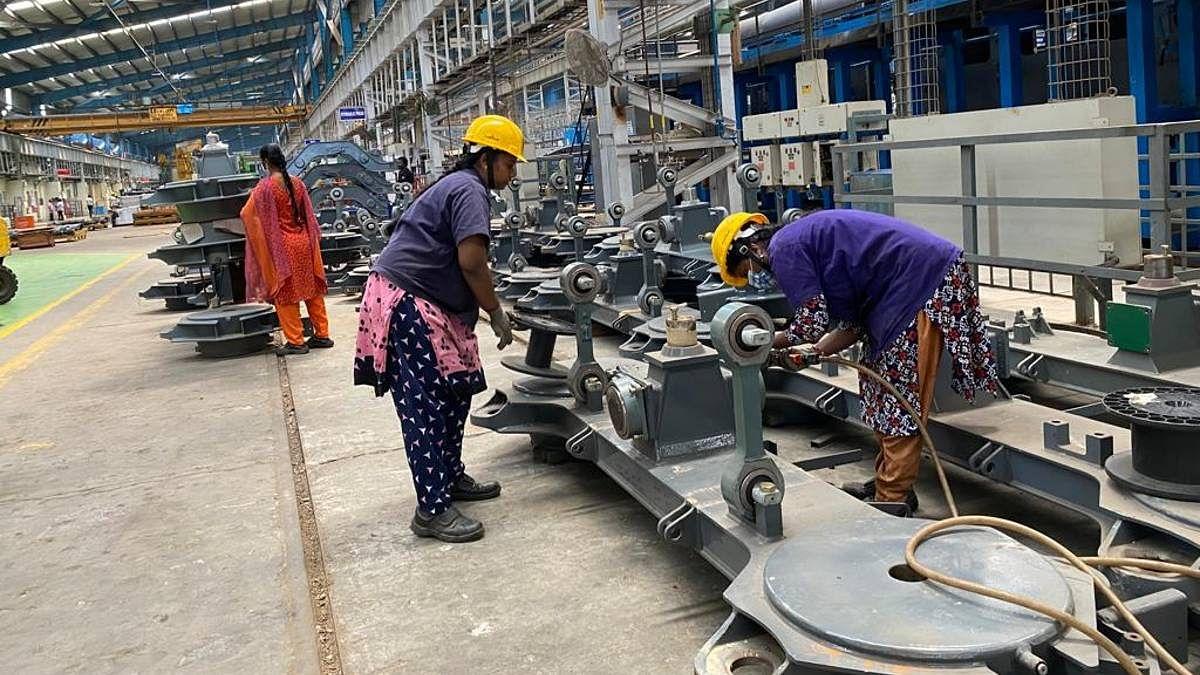
- 31 Jan 2024
Why is it in the News?
To bolster the representation of women in the workforce and advance gender equality, various ministries of the central government issued a series of advisories and surveys on Tuesday, aimed at industries and employers.
About the Survey:
- This survey aims to evaluate the prevalence of women-friendly practices across the nation's workplaces.
- The government is collecting information on several key aspects, including the establishment of internal complaints committees (ICC) for preventing sexual harassment, the provision of childcare facilities, ensuring pay equity, offering flexible or remote work options for women, and providing safe transportation during late hours.
- Additionally, various ministries of the Central government have issued advisories to enhance women's representation in the workforce.
Factors Affecting Low Women Workforce Participation:
- Cultural and Social Norms: Traditional gender roles and societal expectations often discourage women from pursuing full-time employment due to responsibilities for caregiving and homemaking, limiting their participation in the workforce.
- Educational Barriers: Limited access to quality education can hinder women from acquiring the necessary skills and qualifications for certain jobs, further reducing their workforce participation.
- Gender Pay Gap: Disparities in wages between men and women discourage women from entering or remaining in the workforce, contributing to lower participation rates.
- Structural Constraints: India's manufacturing and service sectors often have rigid structures that limit employment opportunities, particularly in the informal sector where many women work.
- Security Concerns: Instances of sexual harassment in the workplace create safety concerns for women, acting as a barrier to their participation in the labour force.
Government Initiatives Supporting Women's Empowerment:
- Code on Wages, 2019: Ensures equal pay for equal work without discrimination based on gender, fostering fairness in wage practices across establishments.
- Code on Occupational Safety, Health And Working Conditions (OSH), 2020: Proposes amendments to improve employment conditions for women workers, particularly in above-ground mines, ensuring their safety and well-being.
- Maternity Benefit Act, 2017: Enhances maternity benefits and fosters a healthier work environment for pregnant and nursing women, promoting their well-being and work-life balance.
- Rashtriya Mahila Kosh (RMK): A national organization offering microfinance services to empower economically disadvantaged women, supporting their livelihood projects and economic independence.
- National Rural Livelihoods Mission (NRLM): Focuses on creating sustainable self-employment opportunities for rural women through skill training, capacity building, and financial assistance, enabling them to engage in income-generating activities.
- MGNREGA (Mahatma Gandhi National Rural Employment Guarantee Act): Guarantees 100 days of wage employment annually to rural households, actively encouraging women's participation and ensuring equitable employment opportunities.
Way Forward
Continued government initiatives aimed at empowering women in the workforce through skill development and expanded employment opportunities have yielded positive results, as evidenced by the Periodic Labour Force Survey (PLFS) released by the Labour Bureau in 2023. This survey indicated a notable increase in women's participation, rising from 23.3% in 2017-18 to 37% in 2022-23.
PM Modi Inaugurates the Diamond Jubilee Celebration of the SC (The Hindu)
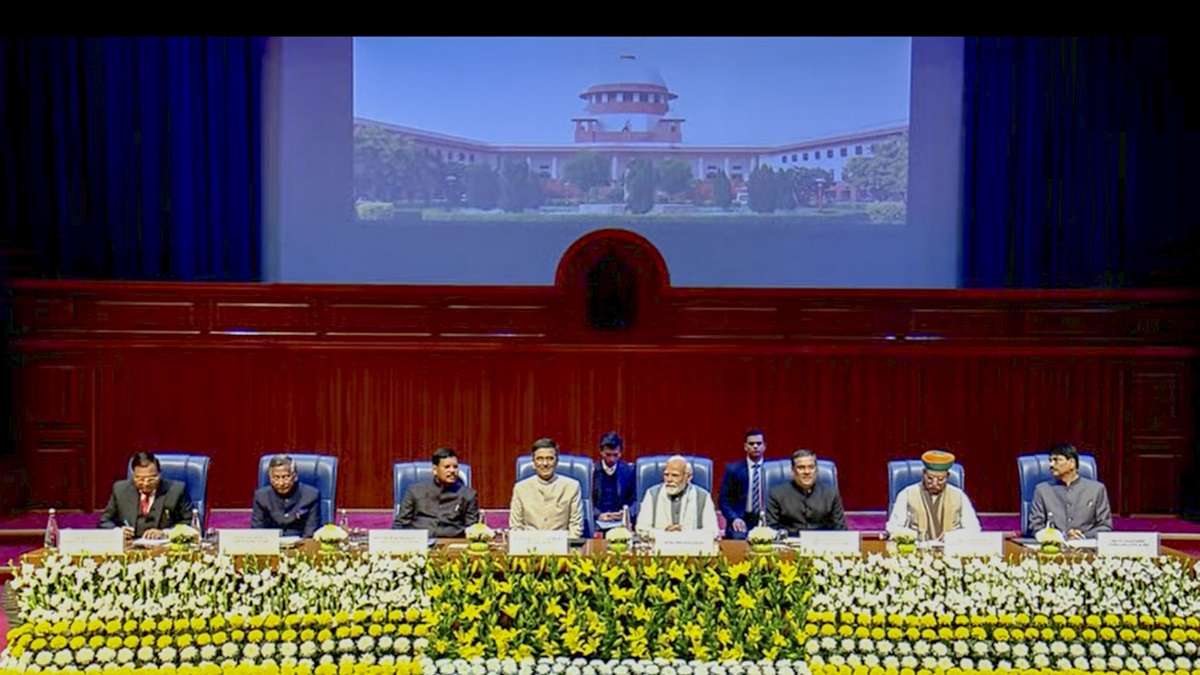
- 29 Jan 2024
Why is it in the News?
Prime Minister Narendra Modi on Sunday said ?800 crore has been approved for the expansion of the Supreme Court building complex while underlining that “ease of justice is the right of every Indian citizen and the Supreme Court is its medium”.
About the Supreme Court of India (SC):
Historical Context:
- The Supreme Court of India, inaugurated on January 26, 1950, coinciding with India's Republic Day, stands as the apex judicial body of the nation.
- Article 124 of the Constitution states that “There shall be a Supreme Court of India.”
- Situated on Tilak Marg, New Delhi, it initially operated from the Parliament House before relocating to its current edifice.
- The present building of the Supreme Court was inaugurated on August 4, 1958, by the first President of India, Dr. Rajendra Prasad.
Judicial Composition:
- The original Constitution envisioned a Supreme Court comprising a Chief Justice and seven puisne Judges, with subsequent increments authorized by Parliament to meet the burgeoning caseload.
- Presently, the Supreme Court consists of 34 Judges, including the Chief Justice, who convene in smaller benches of two or three, while larger benches of five or more, known as Constitution Benches, address critical constitutional matters or resolve conflicting decisions.
Jurisdiction and Powers:
- Endowed with original, appellate, and advisory jurisdiction, the Supreme Court serves as the final interpreter of the Constitution and the ultimate court of appeal.
- Its exclusive original jurisdiction extends to disputes between the Government of India and States or between States (Article 131), while Article 32 empowers it to safeguard Fundamental Rights through writs.
- Additionally, the Supreme Court exercises appellate jurisdiction over High Courts and other judicial bodies, with the power to entertain appeals on substantial questions of law and issue special leave to appeal under Article 136.
- Special advisory jurisdiction is vested in the Supreme Court under Article 143, allowing it to deliberate on matters referred by the President of India.
Judicial Powers and Enforcement:
- Empowered to issue writs and directions for the enforcement of Fundamental Rights, the Supreme Court wields authority to punish for contempt of court, including self-contempt.
- It can reconsider its final judgments through curative petitions and holds the authority to transfer cases between High Courts and adjudicate on election petitions.
Binding Authority:
- As the apex judicial body, judgments rendered by the Supreme Court carry binding precedent on all subordinate courts and tribunals across India, ensuring uniformity and consistency in legal interpretation and application.
CSIR’s Republic Day Tableau highlights the Purple Revolution through Lavender Cultivation in Jammu & Kashmir (PIB)
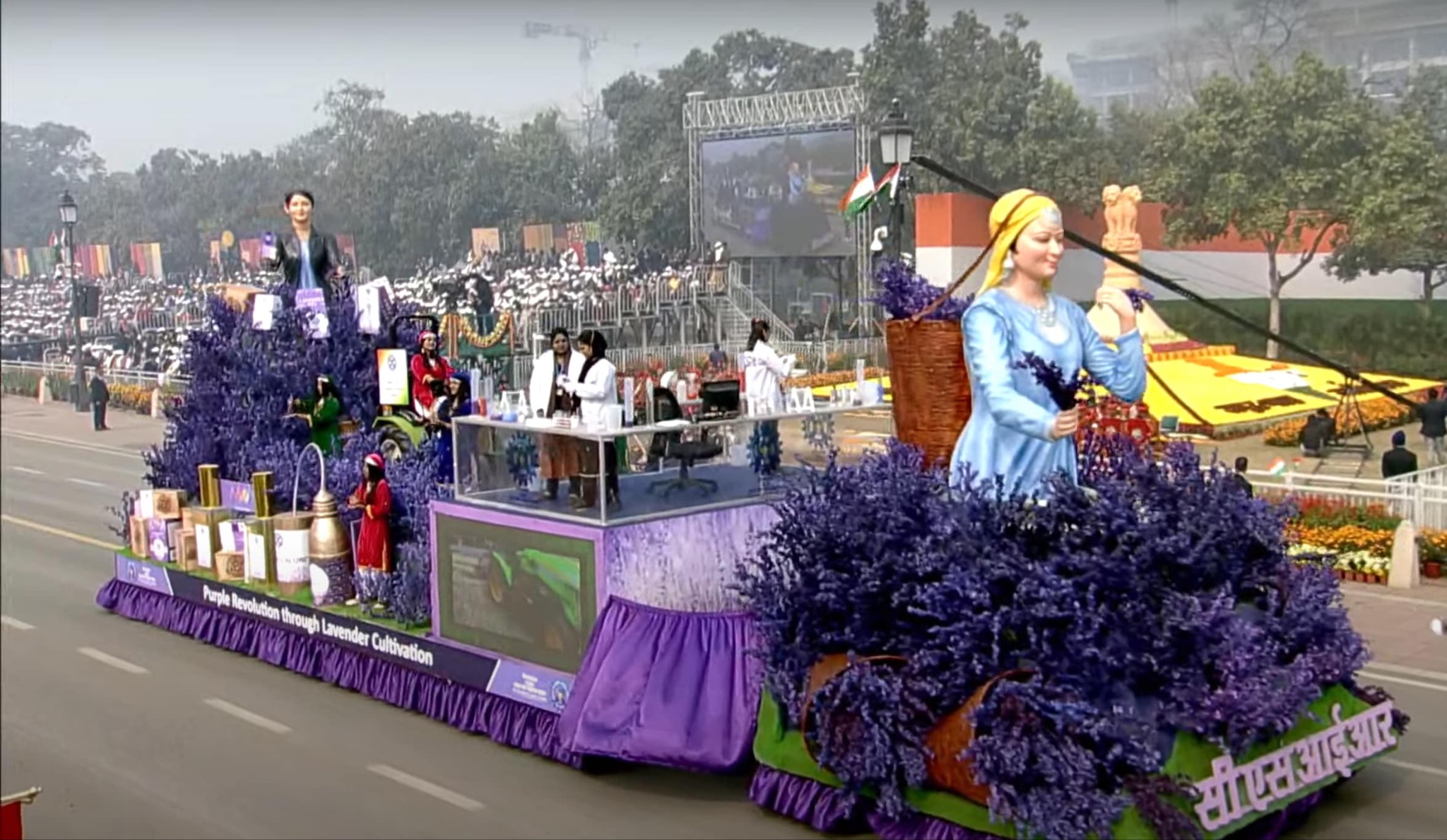
- 27 Jan 2024
Why is it in the News?
The Council of Scientific & Industrial Research's Republic Day Tableau highlighted the unleashing of a Purple Revolution ushered through Lavender cultivation in Jammu & Kashmir.
What is the Purple Revolution?
- The Purple Revolution or Lavender Revolution, launched by the Ministry of Science & Technology, aims to promote the indigenous aromatic crop-based agro-economy through the ‘aroma mission’ of the Council of Scientific and Industrial Research (CSIR).
- The mission aims to increase the income of the farmers and promote lavender cultivation on a commercial scale.
- Lavender oil, which sells for, at least, Rs. 10,000 per litre, is the main commodity.
- Other popular products include medicines, incense sticks, soaps, and air fresheners.
- The cultivation of lavender is very cost-effective as it yields revenue immediately.
- Jammu and Kashmir’s climatic conditions are conducive to lavender cultivation since the aromatic plant can withstand both chilly winters and pleasant summers.
- Additionally, it is a low-maintenance crop, which can be used from its second year of plantation and blossoms for fifteen years.
- In its entirety, lavender production gives better returns when compared to other traditional crops.
- Under the One District One Product-Districts as Export Hubs (ODOP-DEH) initiative, lavender cultivation in Jammu and Kashmir has experienced a significant boom.
- Lavender has been designated by the central government as a "Doda brand product" to promote the rare aromatic plant and boost the morale of farmers, entrepreneurs, and agribusinesses involved in its cultivation as part of this Aroma Mission.
- The Aroma Mission through the Purple Revolution aims to bring about a revolutionary change in the fragrance industry, consequently promoting the expansion of the aroma sector and generating rural employment, through targeted interventions during cultivation, product refinement, market development and curating an expansion strategy for the lavender crop.
About Aroma Mission:
- The Aroma Mission, launched in 2016, aims to enhance the cultivation of plants like lavender, Aloe Vera, Mehndi, Menthol, and Mint, known for their aromatic and medicinal properties.
- Developed by the Council of Scientific & Industrial Research (CSIR), this mission employs new technologies.
- It seeks to revolutionize the aroma sector by improving agricultural practices, processing methods, and product development.
- Additionally, it provides technical and infrastructure support to farmers and growers nationwide, ensuring fair prices through buy-back mechanisms.
- The mission targets to expand cultivation by 30,000 hectares and catalyze aromatic crop cultivation in 60,000 hectares overall.
- This expansion is expected to yield an extra 700 tonnes of essential oils used in perfumery, cosmetics, and pharmaceuticals, creating a business worth at least 200 crores.
As Army launches Op Sarvashakti, recalling Sarpvinash of 2003, that crushed terror base in Pir Panjal (Indian Express)
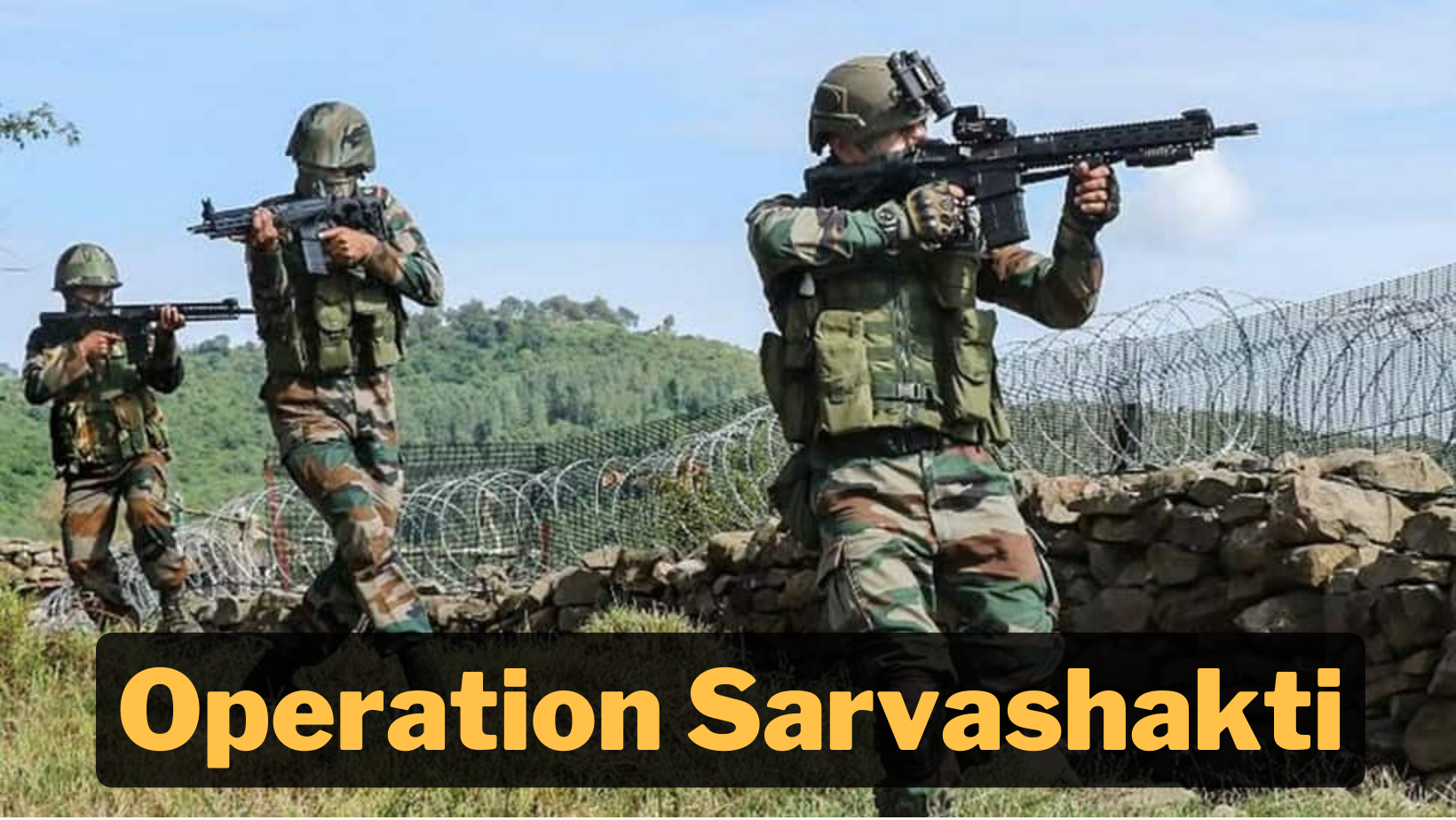
- 25 Jan 2024
Why is it in the News?
The Army has launched Operation Sarvashakti in the Rajouri-Poonch sector of Jammu and Kashmir, deploying forces on both sides of the Pir Panjal range to target terrorists who have carried out a series of attacks on troops in the area.
What is Operation Sarvashakti?
- In a bid to combat increasing terrorist activities in Jammu and Kashmir, the Army has initiated Operation Sarvashakti, under which terrorists operating on both sides of the Pir Panjal mountain ranges in the Union Territory will be neutralised.
- There were three major attacks on the security forces in 2023, and over the past few years, 20 soldiers have been killed in terrorist ambushes in this area.
- Operation Sarvashakti, as part of which at least three brigades of additional troops are being deployed in the sector from various reserve and strike corps formations in order to increase the density of troops and, therefore, the likelihood of contact with terrorists, recalls an earlier operation by the Army in the same forests more than two decades ago.
- Back in 2003, Indian forces launched Operation Sarpvinash to flush out terrorists who had infiltrated from across the border and set up camps in the thick forests south of the Pir Panjal range, especially in the Hilkaka area in Poonch.
What was Operation Sarpvinash?
- Operation Sarpvinash, launched in April 2003, marked a significant counter-insurgency effort in Jammu and Kashmir.
- In response to intelligence indicating over 300 foreign terrorists establishing secure camps in Surankote and Hilkaka post-infiltration across the Line of Control (LoC), the three-month-long operation involved 10,000 troops in a challenging 150 sq km area.
- Employing helicopters and ground forces, the operation neutralized approximately 100 terrorists, dismantled bunkers, and recovered weapons, explosives, and supplies.
- Operation Sarpvinash successfully restored peace to the region until 2017-18, impacting the region's security dynamics.
- However, since 2021, there has been a resurgence of high-intensity attacks on security forces in this area.
Why is this area important strategically?
- The areas south of Mendhar leading to the Pir Panjal range through Hilkaka constitute among the shortest routes of access for infiltrators from across the LoC into the Kashmir valley.
- The terrorists chose this region to set up camps because dominating this area can potentially provide a conduit to personnel in the event of a military operation by the Pakistanis, and easier infiltration of terrorists.
- The dense forests and steep mountain slopes offer both adequate cover and visual domination of the area.
- Terrorists were able to merge with the foliage whenever Indian troops carried out searches in the area and inflicted casualties in case of contact.
- All of these locational advantages for terrorists remain intact to some degree even now.
Centre approves incentive of Rs 8,500 crore for coal gasification projects (Indian Express)
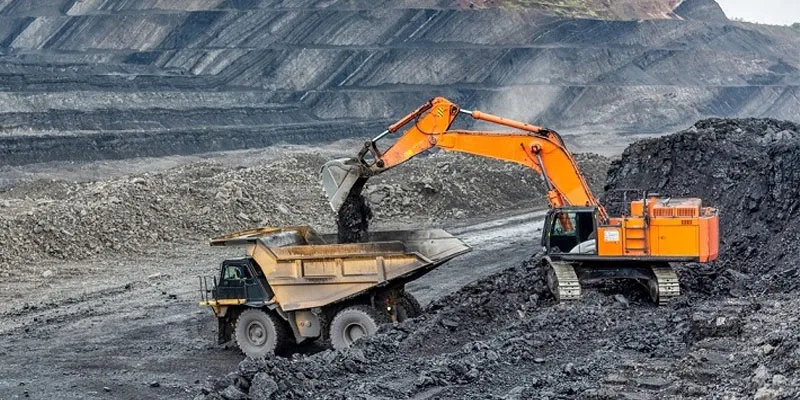
- 25 Jan 2024
Why is it in the News?
In a bid to achieve the target of coal gasification of 100 million tonnes (MT) of coal by 2023 in India, the government recently approved Rs 8,500 crore incentives.
What is Coal Gasification?
- Coal gasification is a thermo-chemical procedure wherein the pressure and heat of the gasifier disintegrate coal into its chemical components.
- The resulting "syngas" are mostly carbon monoxide (CO) and hydrogen, with some other gaseous substances thrown in for good measure.
- Coal gasification is an in-situ method wherein oxygen is infused into the seam together with water and ignited at high temperatures, causing coal to partly oxidised into hydrogen, CO, carbon dioxide (CO2), methane (CH4), and hydrogen sulphide (H2S).
- Ex-situ reactors are designed to simulate the gasification process above the ground's surface.
- Sulphur in coal is transformed to H2S and trace volumes of carbonyl sulphide during the gasification process (COS).
- Acid gas removal technology can easily and cost-effectively discard these sulphur compounds.
- There is no scrubber sludge produced by coal gasification plants, which necessitates careful and expensive disposal.
- The majority of the wash water is reprocessed, and residual wastewater from gasification plants can be treated effectively.
- As a result, coal gasification is regarded as a cleaner coal technology when compared to coal combustion.
- Furthermore, coal could be used to generate a range of products using clean coal innovations such as hydrogen, methanol, and fertilisers via coal gasification.
- Carbon fibres and plastic composites made from coal power plant ash/residue.
How can it be used?
- Syngas, according to proponents of coal gasification, can be used to generate power, in energy-efficient fuel cell technology, or as chemical "building components" for industrial applications.
- The hydrogen can also be extracted and used to power a hydrogen economy.
- Coal gas can also be transformed into a transportation fuel to be used in automobiles as a replacement for gasoline, but it is less efficient than the current output and combustion of petroleum-based gasoline.
- Coal gasification is said to be more efficient than traditional coal burning since it can use the gases two times: the coal gases are first purified of contaminants before being fired inside a turbine to produce energy.
- The gas turbine exhaust heat can be then collected and used to produce steam for a steam turbine generator.
- This is known as a combined process, and according to DOE, a coal gasification processing facility using this dual method can possibly attain an efficiency of 50% or higher, compared to the customary coal power plant, which is typically just above 30%.
Significance of Coal Gasification:
- India announced environmental targets as its Nationally Determined Contribution (NDC) under the Paris Agreement in 2016.
- In order to meet these objectives, coal gasification aids in the decrease of emission levels and the advancement of non-fossil fuel-based energy resources.
- The syngas produced by coal gasification can be used to generate urea and a variety of products such as methanol, Dimethyl ether (DME), and olefins, allowing India to minimise imports and become self-sufficient.
- Syngas CO and H2 are essential reducing agents for steel production and are regarded as an environmentally friendly technique of steel production because they reduce the import of furnace oil.
- India has ambitious plans to produce active pharmaceutical ingredients (API) domestically rather than importing them from China.
- As a result, the potential of Syngas requirement for making APIs, as well as methanol as a solvent, is being investigated.
- The synthesis gas can be used in an Integrated Gasification Combined Cycle (IGCC) system to generate electricity in an efficient and environmentally friendly manner.
Initiatives taken by India:
- The Ministry of Coal, through Atmanirbhar Bharat Abhiyaan, has taken the initiative, National Coal Gasification Mission, that is to utilise coal through coal gasification, with the goal of achieving 100 MT coal gasification by 2030.
- It has also been recommended that all coal companies assign a nodal officer and formulate a plan for gasifying at least 10 per cent of their coal production.
- SHAKTI policy was implemented in coal gasification projects to minimise operating costs by allocating long-term coal linkages through auction.
What is National Voters’ Day?: Govt plans events around theme for 2024 (Indian Express)
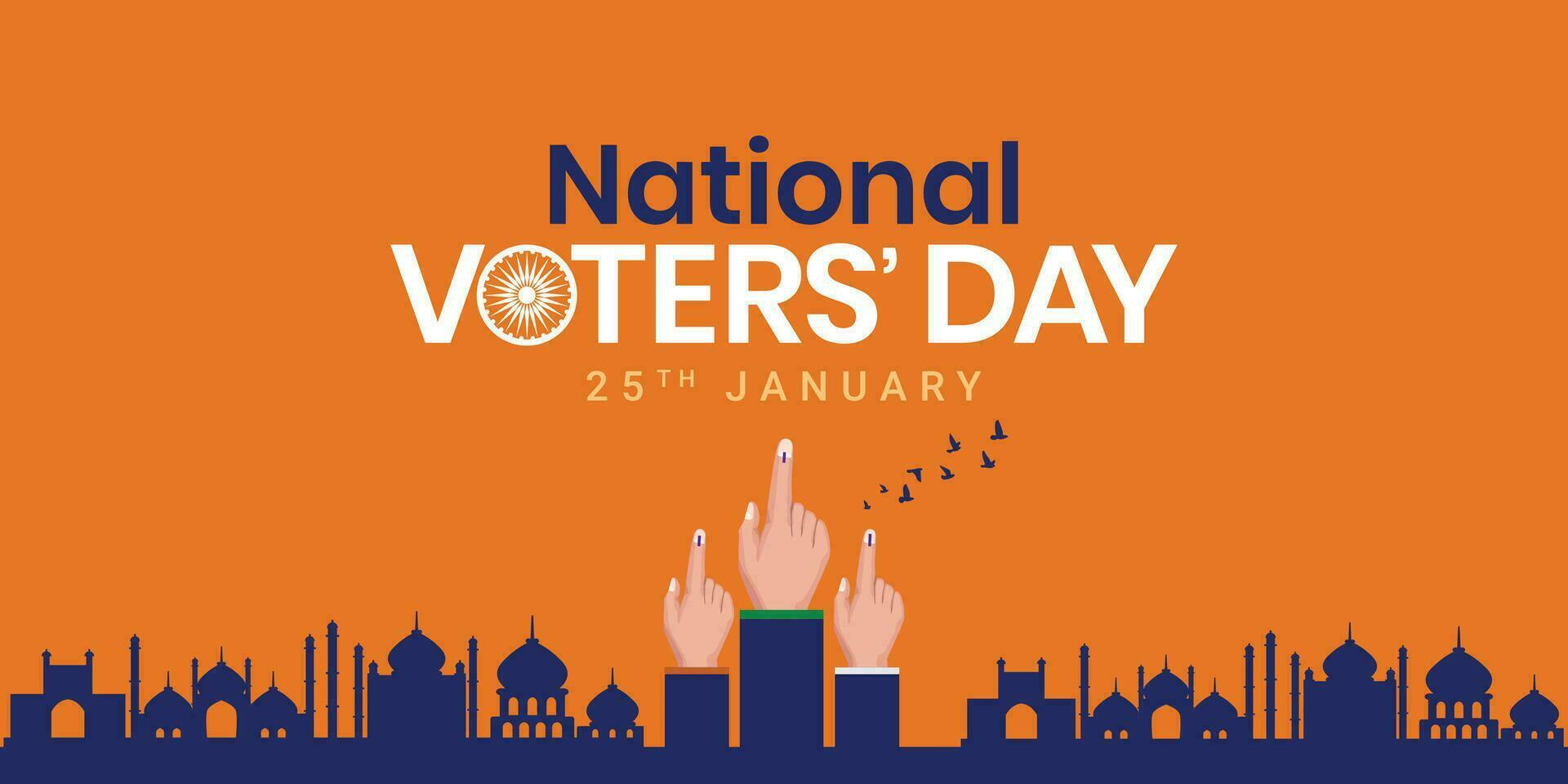
- 25 Jan 2024
Why is it in the News?
India today is celebrating its 14th National Voters’ Day. It is celebrated annually on January 25 since 2011 to mark the foundation day of the Election Commission of India. The ECI was founded on January 25, 1950.
Why is National Voters’ Day celebrated?
- National Voters’ Day aims to promote people’s participation in elections by encouraging and felicitating young voters and increasing voter enrolment.
- It is also utilised to spread awareness among voters and to promote informed participation in the electoral process.
- The day is celebrated at the national, state, district, constituency and polling booth levels, which makes it one of the largest celebrations in the country.
- The date chosen for National Voters' Day commemorates the formation of the Election Commission of India (ECI) on January 25, 1950.
- The ECI is an autonomous constitutional body under Article 324 entrusted with the sacred responsibility of conducting free, fair, and credible elections across the country.
- Since its inception, the ECI has played a pivotal role in upholding the democratic principles of India, ensuring the voice of every citizen is heard.
- The first National Voters’ Day was celebrated in 2011 under the leadership of the then Chief Election Commissioner (CEC) S Y Quraishi.
- Emulating India’s example, six countries, including Sri Lanka, Pakistan, Nepal and Bhutan, have started celebrating National Voters Day.
- National Voters’ Day pledge: As a part of the celebrations, all government offices, autonomous bodies, and organisations take a pledge on the day.
- Schools and educational Institutions across the country are encouraged to conduct activities such as debates, discussions, and competitions on the theme of Voters’ Day.
What is the theme for National Voters’ Day 2024?
- The theme for this year is ‘Nothing Like Voting, I Vote For Sure’, which is a continuation of last year’s theme, and conveys an individual’s feeling and aspiration towards participation in the electoral process through the power of their vote.
- The logo for this year’s theme is designed in such a way that it showcases the festivity and inclusivity of the electoral process.
- The Ashoka Chakra in the background represents the largest democracy in the world, whereas the inked finger represents the participation of each and every voter of the country.
- The tick mark in the logo stands for informed decision-making by the voter.
NFRA to inspect Big 4, others in 2024 too (Financial Express)
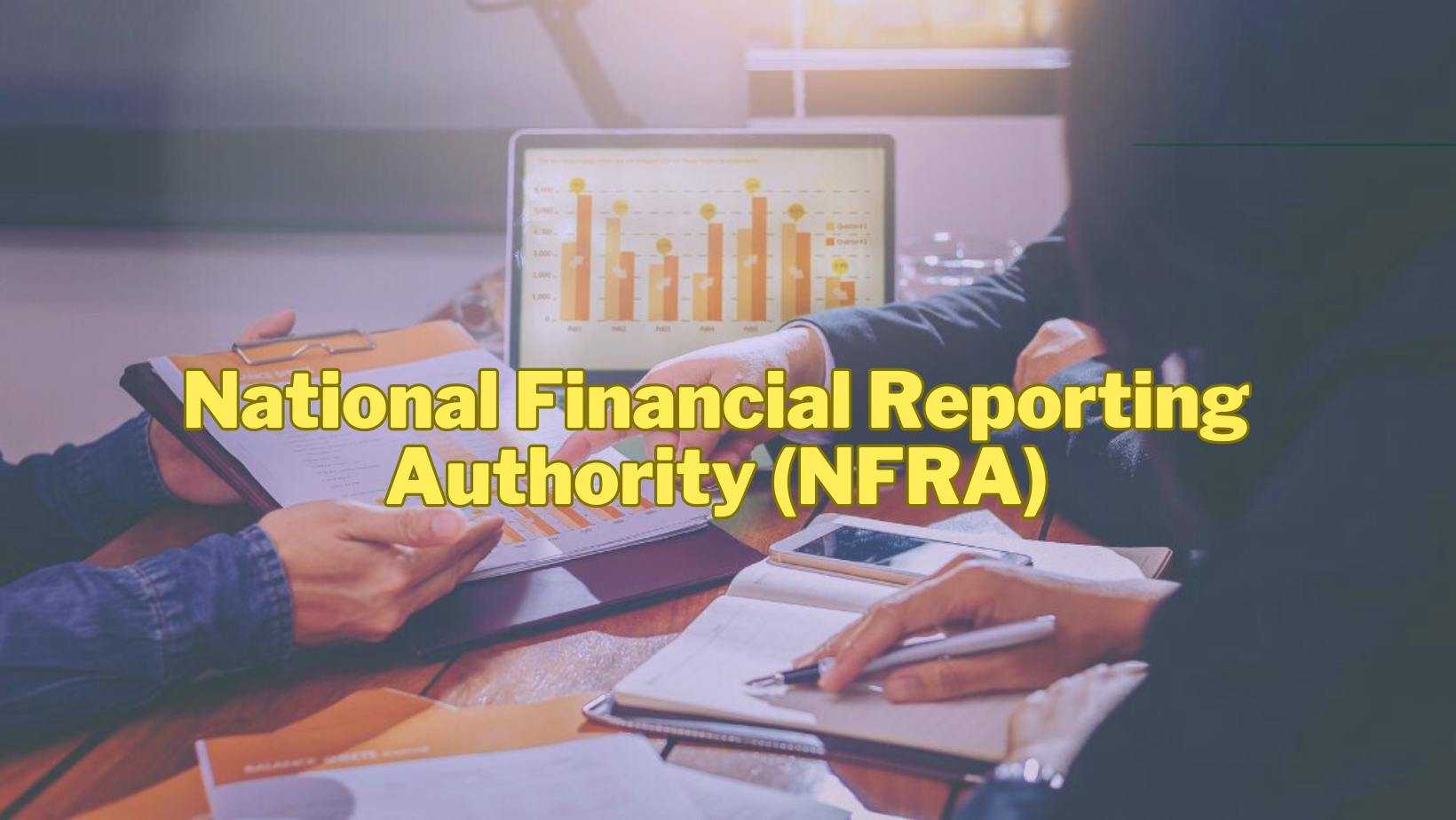
- 25 Jan 2024
Why is it in the News?
The National Financial Reporting Authority (NFRA) is going to inspect the Big Four audit firms as well as other top auditors of large listed entities in 2024, an official familiar with the development told FE.
What is the National Financial Reporting Authority (NFRA)?
- The National Financial Reporting Authority (NFRA) is a statutory body and was constituted on 1st October 2018 by the Government of India under Sub Section (1) of section 132 of the Companies Act, 2013.
- It is responsible for setting accounting standards in the country.
- The Punjab National Bank fraud prompted the government to establish an NFRA as the legal regulator for the auditing profession.
- Its mandate is to improve the quality and consistency of financial statements in the country and ensure that businesses and financial institutions disclose accurate and fair information.
- The National Financial Reporting Authority (NFRA) is located in New Delhi.
- The chairperson since March 2022 is Ajay Bhushan Pandey.
- The NFRA can probe listed as well as unlisted public companies.
- Companies must have a paid-up capital of ?500 crores and an annual turnover of ?1,000 crores.
Functions and Duties:
- As per Sub Section (2) of Section 132 of the Companies Act, 2013, the duties of the NFRA are to:
- Recommend accounting and auditing policies and standards to be adopted by companies for approval by the Central Government;
- Monitor and enforce compliance with accounting standards and auditing standards;
- Oversee the quality of service of the professions associated with ensuring compliance with such standards and suggest measures for improvement in the quality of service;
- Perform such other functions and duties as may be necessary or incidental to the aforesaid functions and duties.
Composition of the NFRA:
- As mandated by the Companies Act, NFRA is comprised of a chairperson appointed by the Central Government and a maximum of 15 members.
- The individuals selected for these roles must possess expertise in accountancy, auditing, finance, or law.
- Furthermore, they are required to declare to the Central Government that there is no conflict of interest or lack of independence in their appointment.
Membership Qualifications:
- All members, including the chairperson, who are in full-time employment, are prohibited from association with any audit firm (including related consultancy firms) during their term of office and for a period of two years after the completion of their term.
Powers of the NFRA:
- The NFRA has the same powers as the Civil Court.
- The NFRA has the authority to investigate matters of misconduct involving CAs and Chartered Accountants.
- It can impose a penalty of not less than ?1 lakh but not exceeding 5 times the fees collected.
- Also, the NFRA may also investigate and take action against individuals who violate the rules of professional conduct.
- It has the power to initiate investigations on its own and upon referral from the Central Government.
What is end-to-end encryption? How does it secure information? (The Hindu)
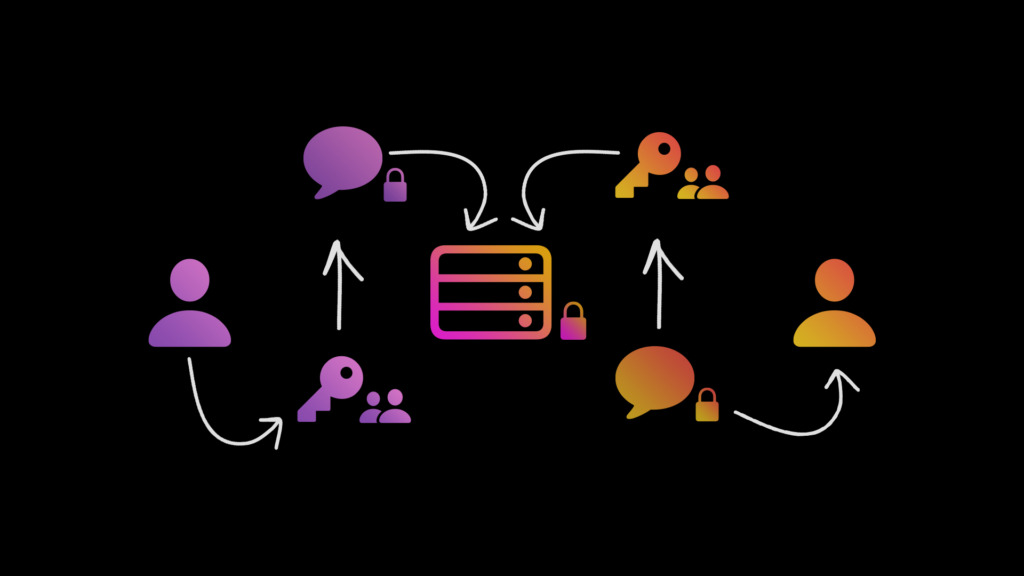
- 24 Jan 2024
Why is it in the News?
There are several ways to encrypt information depending on the level of secrecy and protection required.
What is End-to-end Encryption (E2EE)?
- End-to-end encryption (E2EE) is a type of messaging that keeps messages private from everyone, including the messaging service.
- When E2EE is used, a message only appears in decrypted form for the person sending the message and the person receiving the message.
- The sender is one "end" of the conversation and the recipient is the other "end"; hence the name "end-to-end."
How Does Encryption Work?
- Encryption works by altering data so that only someone who possesses a specific piece of knowledge — known as the key — can interpret the data.
- Keys can take different forms in different contexts.
- With communications over the Internet, a key is a string of bits that plays a role in the complex mathematical equations used to scramble and unscramble data.
- With E2EE, the key that can encrypt and decrypt messages remains saved on a user's device.
What Kind of Encryption Does E2EE Use?
- End-to-end encryption uses a specialized form of encryption called public key encryption (also sometimes called asymmetric encryption).
- Public key encryption enables two parties to communicate without having to send the secret key over an insecure channel.
- Public key encryption relies on using two keys instead of one: a public key and a private key.
- While anyone, including the messaging service, can view the public key, only one person knows the private key.
- Data encrypted with the public key can only be decrypted with the private key (not the public key).
- This contrasts with symmetric encryption, where only one key is used to both encrypt and decrypt.
How Does End-to-end Encryption Support Privacy?
- E2EE ensures that no one can see messages except for the two people who are communicating with each other.
- When implemented properly, it does not require users to trust that a service will handle their data properly.
- Thus, E2EE gives people total control over who can read their messages, enabling them to keep their messages private.
What are the Limitations of End-to-end Encryption?
- E2EE keeps messages secure in transit (as they pass from one person to another).
- But it does not protect messages once they reach their destination.
- E2EE is not guaranteed to be future-proof. When implemented correctly, modern encryption methods are strong enough to resist encryption-breaking efforts from even the most powerful computers in the world.
- But the more powerful in the future like Quantum computers, if developed, would be able to crack modern encryption algorithms.
- Using E2EE keeps messages secure in the present, but it may not keep them secure permanently.
How the new Education Ministry guidelines will affect the coaching institutes (HT)
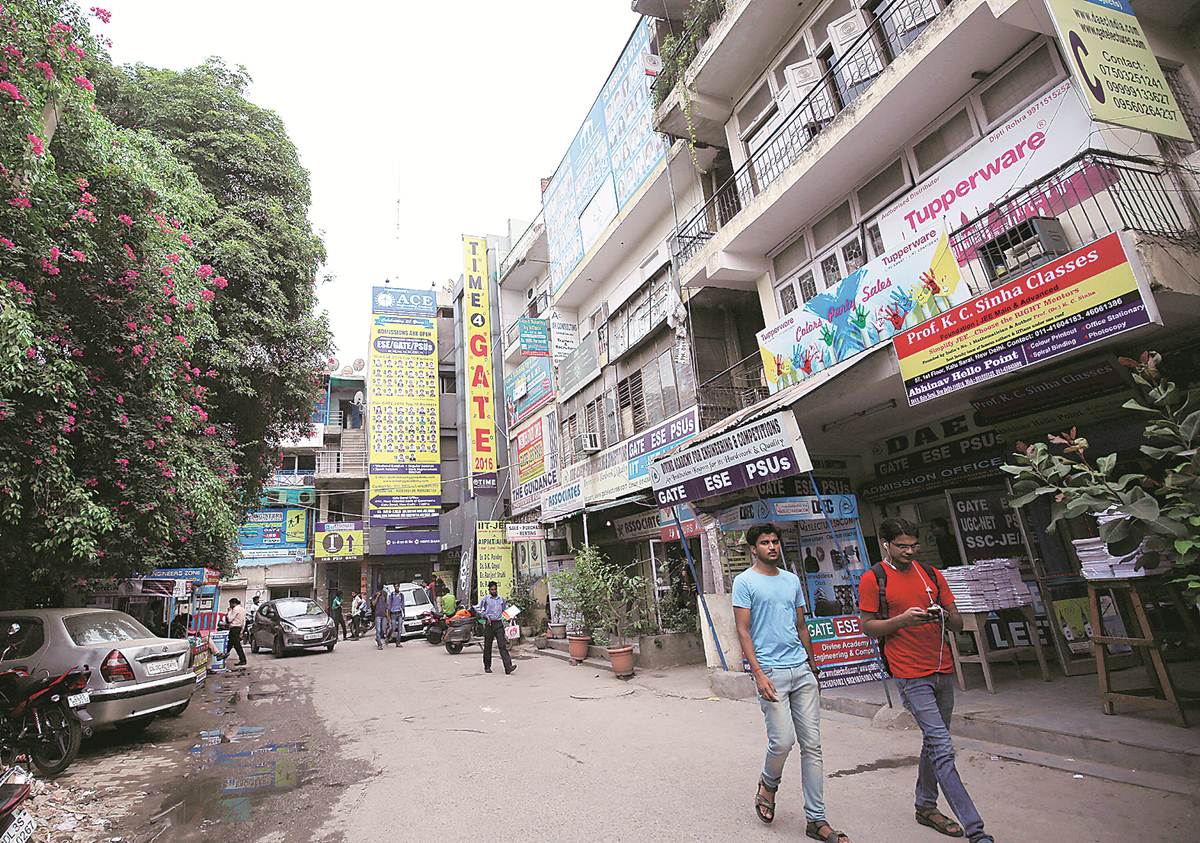
- 20 Jan 2024
Why is it in the News?
Taking cognisance of coaching centres charging exorbitant fees from students, promoting unhealthy competition and stress among students, and a rise in student suicides and other malpractices, a set of new guidelines were released by the Education Ministry.
Guidelines for Registration and Regulation of Coaching Centers 2024:
- The guidelines define a 'coaching centre' as an establishment providing coaching for study programs, competitive exams, or academic support to more than 50 students at the school, college, and university levels, established, run, or administered by any person.
Key aspects of the guidelines include:
- Registration Process: Coaching centres must apply for registration within their local jurisdiction, adhering to specified forms, fees, and document requirements.
- Each branch of a coaching centre is considered a separate entity, requiring individual registration.
- Marketing Standards: Coaching centres are prohibited from making misleading promises or guarantees regarding ranks or marks.
- Transparency is mandated, with centres required to maintain an updated website containing detailed information.
- Student Enrollment: Students below the age of 16 are not permitted for enrolment, and entry is allowed only after the completion of secondary school examinations.
- Fee Structure: Tuition fees must be fair, with detailed receipts provided.
- A comprehensive prospectus must include information on courses, duration, facilities, fees, and refund procedures. Any fee increase during the course is prohibited.
- Exit Policy: Pro-rata refunds are mandated within 10 days for mid-course withdrawals.
- Infrastructure Requirements: Coaching centres must allocate a minimum of one square meter per student.
- Compliance with fire safety and building codes is essential, along with proper electrification, ventilation, lighting, security measures, and medical assistance.
- Study Hours: Classes should not coincide with school hours, and weekly off for students and tutors is mandatory.
- Class sizes must align with a healthy teacher-student ratio.
- Mental Wellbeing: Centers should establish mechanisms for immediate intervention and counselling for students in distress.
- Complaint Mechanism: Students, parents, or tutors/employees can file complaints, to be resolved within thirty days by the competent authority or an inquiry committee.
- Penalties: Penalties for violations include ?25,000 for the first offence, ?1 lakh for the second, and registration revocation for subsequent breaches.
National Quantum Mission to call for proposals to set up four tech hubs (PTI)
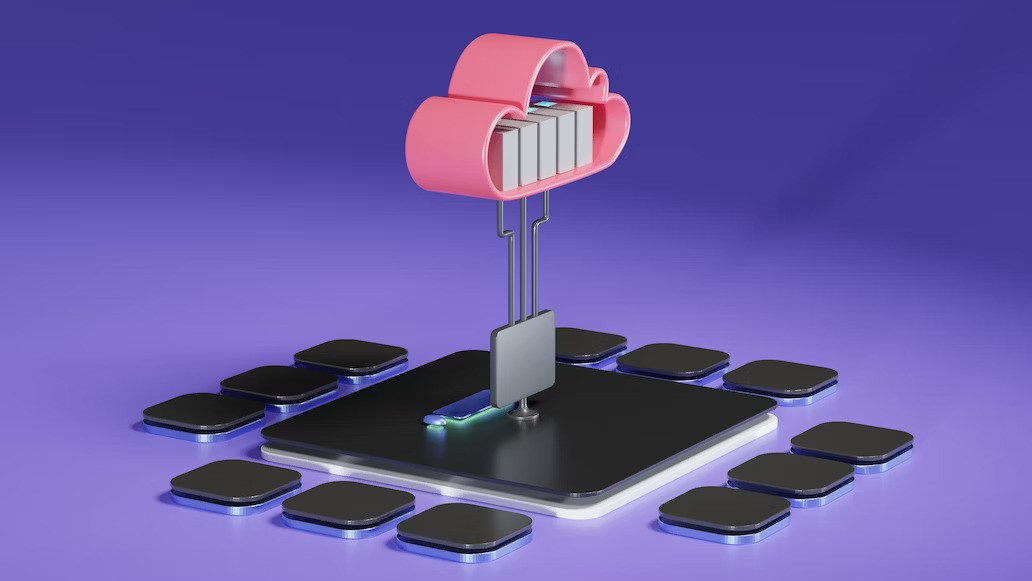
- 19 Jan 2024
Why is it in the News?
The government will set up a coordination cell to implement the National Quantum Mission (NQM) with a focus on establishing four technology hubs in the format of consortia of academia, research and development labs and industry.
What is the National Quantum Mission (NQM)?
- The National Quantum Mission (NQM) will assist India take a giant leap into the future of technology.
- India has entered the ranks of the select few nations actively pursuing the advancement of quantum technology by establishing this programme.
- In 2023, the government sanctioned the National Quantum Mission (NQM), spanning from 2023-24 to 2030-31, with the following key features:
- The mission aims to initiate, foster, and amplify scientific and industrial research and development in Quantum Technology (QT), establishing a dynamic and innovative ecosystem.
- Its ultimate goal is to propel quantum technology-led economic growth, foster the QT ecosystem, and position India as a leading nation in the field of Quantum Technologies & Applications.
- It willl be implemented by the Department of Science & Technology (DST) under the Ministry of Science & Technology.
Key Objectives:
- Develop intermediate-scale quantum computers with 50-1000 physical qubits across platforms like superconducting and photonic technology within eight years.
- Implement satellite-based secure quantum communications over a 2000-kilometre range within India, ensuring long-distance secure quantum communications with other countries.
- Establish inter-city quantum key distribution over 2000 km and multi-node Quantum networks with quantum memories.
- Develop highly sensitive magnetometers in atomic systems and Atomic Clocks for precision timing, communications, and navigation.
- Support the design and synthesis of quantum materials like superconductors, novel semiconductor structures, and topological materials for quantum device fabrication.
- Develop single photon sources/detectors and entangled photon sources for applications in quantum communications, sensing, and metrology.
Implementation:
- The mission involves the establishment of four Thematic Hubs (T-Hubs) in leading academic and National R&D institutes, focusing on Quantum Computing, Quantum Communication, Quantum Sensing & Metrology, and Quantum Materials & Devices.
- These hubs will concentrate on generating new knowledge through basic and applied research and promote R&D in their respective domains.
Significance:
- NQM has the potential to elevate India's Technology Development ecosystem to global competitiveness.
- It is expected to significantly benefit various sectors such as communication, health, finance, and energy, with applications ranging from drug design to space, banking, and security.
- The mission aligns with national priorities, including Digital India, Make in India, Skill India, Stand-up India, and Start-up India, and contributes to Sustainable Development Goals (SDG).
- With the launch of this mission, India will be the seventh country to have a dedicated quantum mission after the US, Austria, Finland, France, Canada and China.
What is Quantum Technology?
- The term "quantum technology" is used to describe the research and development of techniques to build supercomputers with enhanced speed, security, and efficiency in data processing above conventional computers.
- Quantum mechanics, which governs the behaviour of subatomic particles, is used to design these novel systems.
- The peculiar characteristics of subatomic particles are the key to quantum technology's capabilities in processing massive quantities of information concurrently.
Telco body seeks USOF, tax reliefs in FY25 Union Budget (Live Mint)
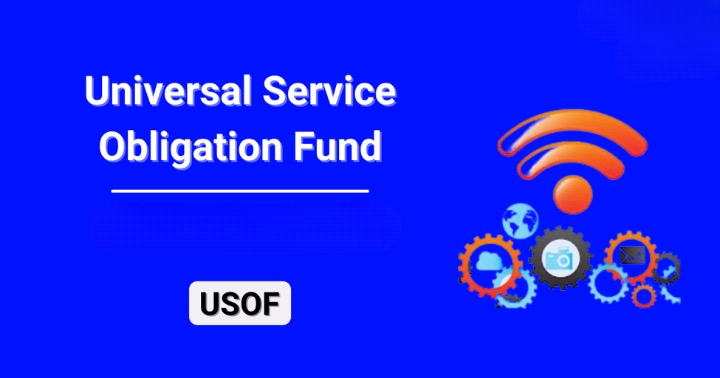
- 19 Jan 2024
Why is it in the News?
Telecom services providers have urged the Ministry of Finance to suspend the Universal Service Obligation Fund (USOF) till the existing corpus is exhausted.
About Universal Service Obligation Fund (USOF):
- The USOF was established through a parliamentary amendment to the Indian Telegraph (Amendment) Act, 2003.
- Its primary goal is to ensure non-discriminatory access to affordable telecom services in rural and remote areas, thereby narrowing the digital gap between urban and rural regions.
- For financially unviable rural and remote areas, the USOF provides subsidy support in the form of Net Cost or Viability Gap Funding (VGF).
- This encourages telecom service providers to expand their services to these areas, enhancing telecommunications and broadband accessibility.
- Funding Mechanism: Telecom operators contribute to the USOF through a Universal Service Levy (USL), a percentage of their Adjusted Gross Revenue (AGR).
- Administration: The USOF is overseen by the Administrator, USO Fund, appointed by the Central Government.
- It operates as an attached office under the Department of Telecommunications (DoT), Ministry of Communications.
Telecom Technology Development Fund (TTDF):
- Launched by USOF on October 1st, 2022, the TTDF Scheme targets domestic companies and institutions engaged in designing, developing, and commercializing telecommunication products and solutions.
- The scheme aims to facilitate affordable broadband and mobile services in rural and remote areas.
- The initiative fosters connections between schools and diverse volunteers from the Indian Diaspora, including young professionals, retired teachers, retired government officials, NGOs, private sector companies, corporate institutions, and more.
- Under the scheme, USOF is committed to developing standards to meet nationwide requirements and establishing an ecosystem for research, design, prototyping, use cases, pilots, and proof-of-concept testing.
- The scheme provides grants to Indian entities, encouraging the integration of indigenous technologies tailored to domestic needs.
Cellular Operators Association of India (COAI)
- The Cellular Operators Association of India (COAI), was constituted in 1995 as a non-governmental society registered under the Societies Act, 1860.
- The Association is dedicated to the advancement of modern communications through the establishment of a world-class cellular infrastructure and to delivering the benefits of affordable mobile communication services to the people of India.
- Today it is regarded as an important interface between the main stakeholders of the Indian Telecom Ecosystem, i.e. Government, Operators, Consumers, Equipment Manufacturers, and Content Providers.
- COAI provides a forum for discussions and exchange of ideas between Service Providers, Policy Makers, Regulators, Technologists, etc., who share a common interest in the development of mobile telephony in the country.
India’s first graphene centre becomes reality (Indian Express)
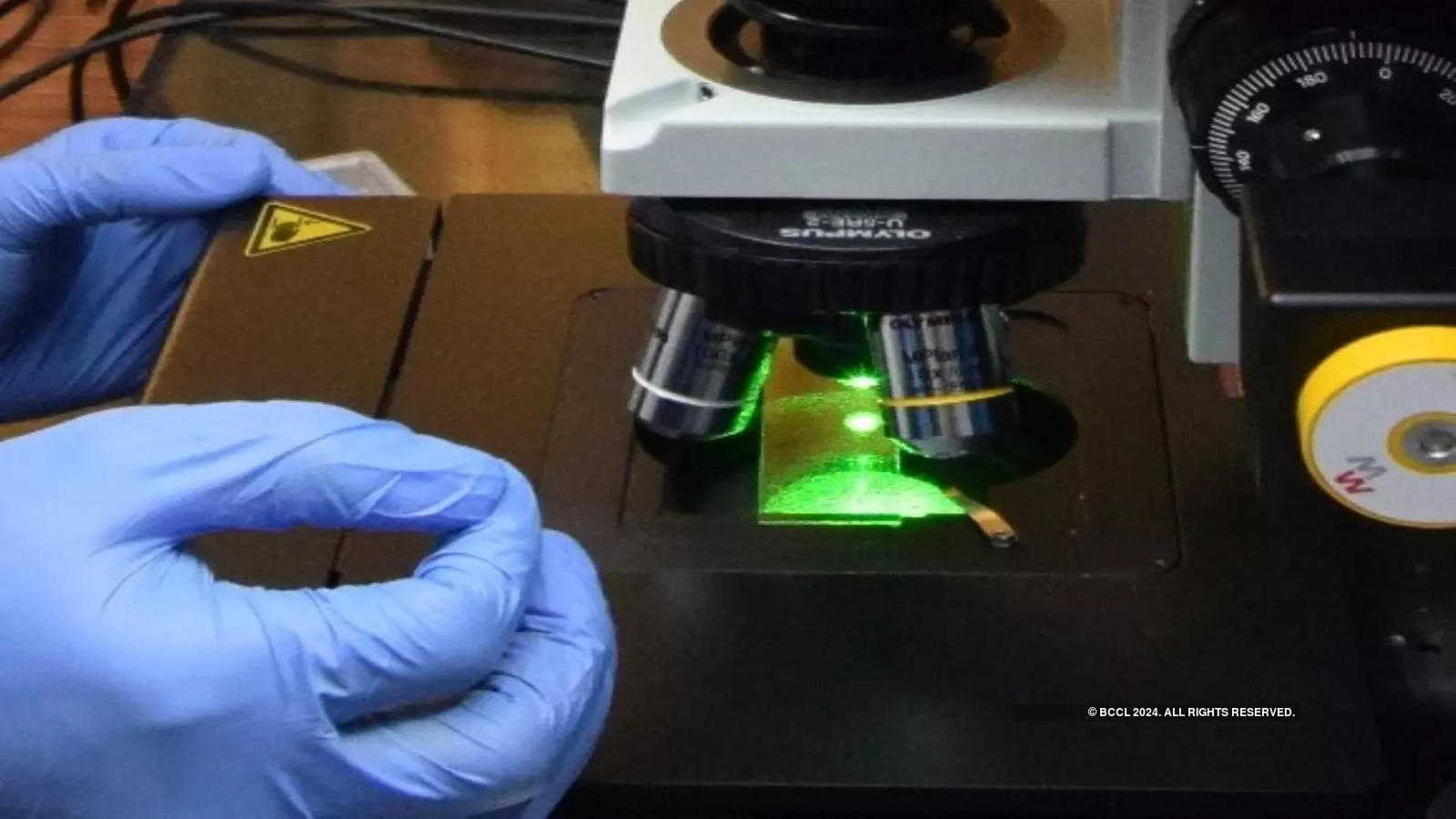
- 18 Jan 2024
Why is it in the News?
The Union government recently launched India’s first graphene centre ‘India Innovation Centre for Graphene (IICG)’ at Maker Village Kochi.
About India Innovation Centre for Graphene (IICG):
- India Innovation Centre for Graphene (IICG) is India’s first Graphene Centre.
- It is a joint venture of the Digital University of Kerala, the Centre for Materials for Electronics Technology (C-MET) and Tata Steel Limited.
- Key Aspects: IICG is committed to advancing research and development, fostering product innovation, and enhancing capacity building in the field of Graphene and two-dimensional materials (2DM).
- With a vision to bridge the gap between research and commercialization, IICG actively supports the Graphene-Aurora program initiated by the Ministry of Electronics and Information Technology (MeitY).
- This program aims to provide a comprehensive facility for startups and industries to facilitate seamless progression from research and development to commercialization.
About Graphene:
- Graphene is a one-atom-thick layer of carbon atoms arranged in a hexagonal lattice, serves as the fundamental building block of Graphite, utilized in various applications, including pencil tips.
- Scientists first isolated Graphene in 2004.
Properties of Graphene:
- Recognized as the world's thinnest material, Graphene boasts a thickness of only one atom, making it one million times thinner than human hair.
- Despite its extreme thinness, Graphene exhibits exceptional strength, surpassing even steel and diamond.
- It functions as an outstanding conductor of both heat and electricity, surpassing copper in electrical conductivity.
- Remarkably transparent, Graphene absorbs only 2% of light.
- Impermeable to gases, including lightweight gases like hydrogen and helium.
Applications:
- Mechanical Strength: Used to enhance the strength of various materials.
- Thermal Applications: Ideal for creating heat-spreading solutions, such as heat sinks or heat dissipation films.
- This has applications in microelectronics (e.g., improving the efficiency and lifespan of LED lighting) and larger applications like thermal foils for mobile devices.
- Energy Storage: Due to its minimal thickness, Graphene possesses an exceptionally high surface-area-to-volume ratio, making it promising for use in batteries and supercapacitors.
- It holds the potential to enable energy storage devices, including batteries, supercapacitors, and fuel cells, with increased energy storage capacity and faster charging capabilities.
- Future Potential: Graphene shows promise in various potential applications, including anti-corrosion coatings and paints, precise sensors, efficient electronics, flexible displays, solar panels, accelerated DNA sequencing, drug delivery systems, and more.
Telangana signs agreement with WEF for setting up C4IR in Hyderabad (The Hindu)
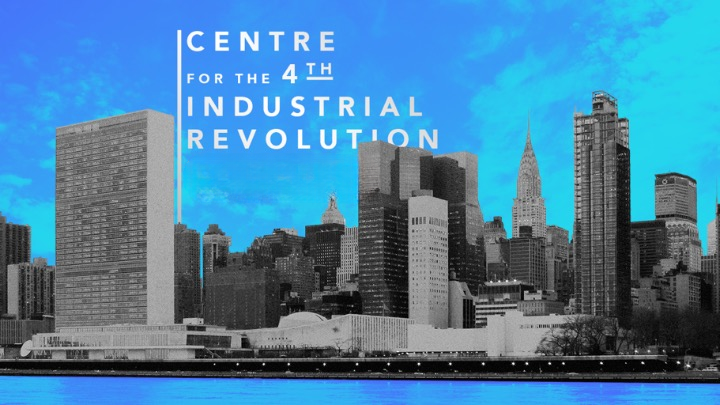
- 18 Jan 2024
Why is it in the News?
Recently, Telangana has signed an agreement with the World Economic Forum (WEF) to establish the Centre for Fourth Industrial Revolution (C4IR) in the state capital, Hyderabad.
About the Centre for Fourth Industrial Revolution (C4IR):
- C4IR is a global initiative of the World Economic Forum (WEF) to collaborate with governments, businesses, academia, and civil society to address the challenges and opportunities posed by the Fourth Industrial Revolution (4IR).
- The focus of this collaboration is to use technology for advancements in the life sciences and healthcare sector, particularly aiming to meet healthcare targets for the state’s population.
- Telangana aims to become a hub for health technology and a global centre for healthcare services.
About Fourth Industrial Revolution (4IR):
- Klaus Schwab, the executive chairperson of the World Economic Forum (WEF), coined the term 4IR in 2016.
- This term refers to advancements in artificial intelligence, machine learning, 5G technology, the Internet of Things, robotics, biotechnology, quantum computing, and more.
- These technologies offer new possibilities for organizations, allowing them to dream big and expand into areas that were previously unimaginable.
The World Economic Forum
- The World Economic Forum is the International Organization for Public-Private Cooperation.
- The Forum engages the foremost political, business, cultural and other leaders of society to shape global, regional and industry agendas.
- It was established in 1971 by German engineer and economist Klaus Schwab.
- It is a not-for-profit foundation and is headquartered in Geneva, Switzerland.
- The Forum strives in all its efforts to demonstrate entrepreneurship in the global public interest while upholding the highest standards of governance.
Union Minister Rao Inderjit Singh launches the MPLADS e-SAKSHI Mobile Application for the Revised Fund Flow Procedure under the MPLAD Scheme (PIB)
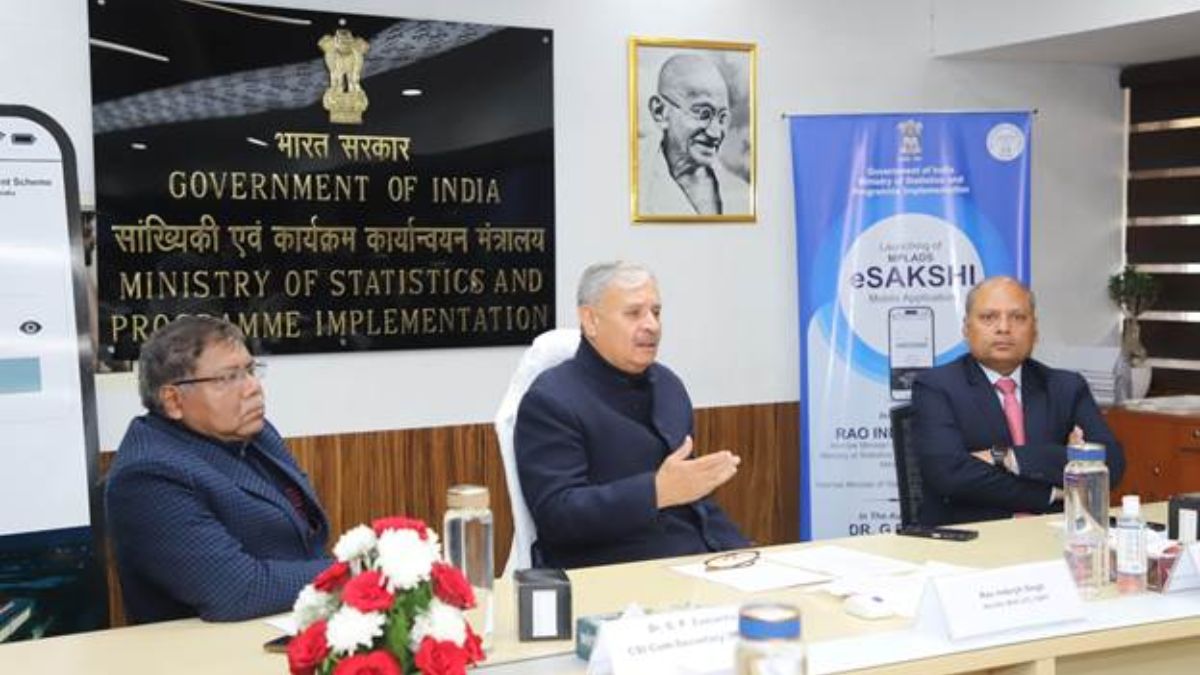
- 17 Jan 2024
Why is it in the News?
Recently, the Minister of State (Independent Charge) of the Ministry of Statistics and Programme Implementation (MoSPI) Rao Inderjit Singh launched the MPLADS e-SAKSHI Mobile Application at Khurshid Lal Bhawan, New Delhi.
What is the e-SAKSHI Mobile Application?
- The e-SAKSHI mobile application was devised for the revamped fund flow procedure within the Members of Parliament Local Area Development Scheme (MPLAD).
- It is poised to revolutionize the way Members of Parliament (MPs) engage with and oversee development projects in their constituencies.
Key Features of e-SAKSHI:
- Convenience and Accessibility: MPs can seamlessly propose, track, and supervise projects with the application, ensuring convenience and accessibility at their fingertips.
- Real-time Access: The application provides real-time access, enhancing decision-making by enabling swift responses to emerging needs or issues.
- Streamlined Communication: e-SAKSHI facilitates streamlined communication between MPs and relevant authorities, promoting an efficient exchange of information.
- Transparency: MPs receive instant updates on the status and progress of proposed projects, promoting transparency in the implementation process.
- Budget Management: The application includes features for budget management, empowering MPs to monitor expenditures effectively.
Key Points about the MPLAD Scheme:
- Introduced in 1993, MPLAD is a fully funded Government of India scheme where funds are released directly to district authorities as grants-in-aid.
- The funds are non-lapsable, allowing the carry-forward of entitlement not released in a specific year to subsequent years, subject to eligibility.
- MPs have an annual entitlement of ?5 crore per constituency, with their role limited to recommending works.
- District authorities are responsible for sanctioning, executing, and completing the recommended works within stipulated timelines.
- Lok Sabha members recommend works in their respective constituencies, while Rajya Sabha members can recommend works anywhere in their elected state.
- Nominated members can recommend works nationwide.
- MPLADS works can be implemented in areas affected by various natural calamities, ensuring a flexible and responsive approach to development needs.
The last batch of Mizoram Bru refugees permanently settled in Tripura (The Hindu)
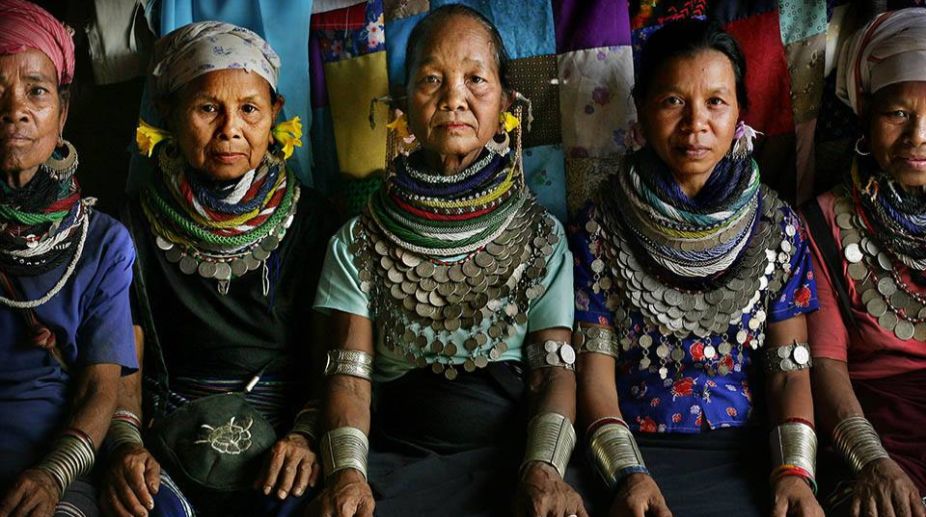
- 16 Jan 2024
Why is it in the News?
The Tripura government has allocated land for the rehabilitation of the last batch of Mizoram Bru refugees, who were granted permanent settlement in Tripura through a Home Ministry-initiated quadripartite agreement signed on January 16, 2020.
Who are Bru refugees?
- Brus, also referred to as Reangs, are a tribal community indigenous to northeast India and have historically resided in parts of Mizoram, Tripura, and Assam.
- In the state of Tripura, the Brus are a designated Particularly Vulnerable Tribal Group (PVTG).
- Most Brus residing in Tripura today have suffered more than two decades of internal displacement, fleeing ethnic persecution primarily from the neighbouring state of Mizoram.
Bru-Reang Refugee Crisis:
- It all started in 1995 when the Young Mizo Association and the Mizo Students' Association demanded that Brus be eliminated from Mizoram’s electoral rolls as they were not indigenous inhabitants.
- Being ethnically distinct from the majority of Mizos, the Brus are often referred to as “Vai” in the state, meaning outsiders or non-Mizos.
- Tensions escalated after the Brus retaliated against the Mizos’ attempts to disenfranchise them, and organized themselves into an armed group, the Bru National Liberation Front, and a political entity, the Bru National Union.
- They also demanded the creation of a separate Bru Autonomous District Council (ADC) in western Mizoram as per the provisions of the sixth schedule of the Indian Constitution.
- However, their attempts at seeking greater autonomy were foiled and resultant ethnic clashes forced many Reangs in Mamit, Kolasib and Lunglei districts of Mizoram to migrate to neighbouring Tripura in 1997.
- Today, roughly 35,000 Reangs continue to reside in north Tripura’s Kanchanpur camp as refugees, as per Home Ministry estimates.
Have there been any attempts to resettle the Brus?
- The state governments, along with the union government have made multiple attempts to send Brus back to their homeland in Mizoram.
- But until 2014, following eight rounds of resettlement, only an estimated 5,000 individuals, or 1622 Bru-Reang families returned to Mizoram in various batches.
- In July 2018, the governments of Tripura, Mizoram, and the central government concluded a quadripartite pact with Bru community representatives to resettle refugees in Mizoram.
- This was however opposed by not only native Mizo groups but also by the Reangs who feared threats to life and further ethnic repression in their home state.
- Efforts were still made to pursue the terms of this pact. The supply of free ration to relief camps was halted on instructions of the Home Ministry in a bid to hastily complete the repatriation of refugees, which resulted in at least six starvation deaths.
- Sensing a failure of the 2018 pact, the four groups once again came together in January 2020 to sign another quadripartite pact to resettle the Brus, this time in the state of Tripura.
- The central government earmarked a Rs 600 crore package to aid the rehabilitation efforts, and the Bru families were promised a residential plot, a fixed deposit of Rs 4 lakh, a Rs 1.5 lakh grant to construct their houses, as well as free ration and a monthly stipend of Rs 5,000 for a period of two years.
- Additionally, the renewed 2020 pact also promised to include the displaced Reangs in the electoral rolls in Tripura.
Goyal asks FCI officers to turn whistleblowers to curb corruption (The Hindu)
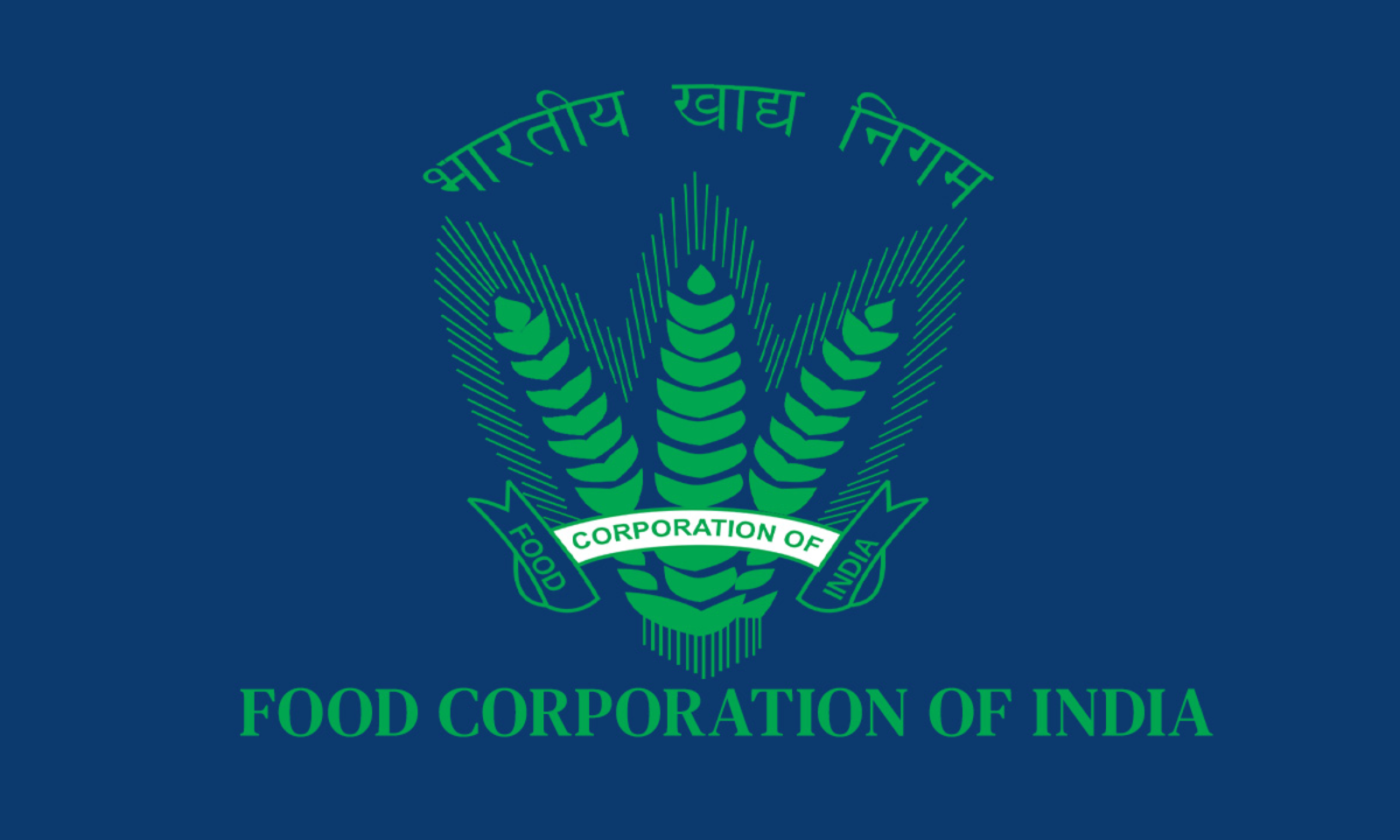
- 15 Jan 2024
Why is it in the News?
Recently, the Food Minister said the role of FCI is not only to deliver ration but also to instil confidence in farmers and beneficiaries by bringing in transparency, efficiency and accountability.
About the Food Corporation of India (FCI):
- FCI is a statutory body with multifaceted objectives aimed at ensuring national food security.
- It was established through the enactment of the Food Corporation Act, of 1964 by the Parliament.
- As part of the Ministry of Consumer Affairs, Food and Public Distribution, FCI plays a pivotal role in supporting farmers, managing food distribution, and maintaining strategic food grain stocks.
Key Objectives:
- Effective Price Support Operations: FCI focuses on safeguarding farmers' interests through efficient price support operations.
- Public Distribution System (PDS): The distribution of food grains nationwide for the PDS forms a crucial aspect of FCI's mandate.
- Operational and Buffer Stocks: FCI is entrusted with maintaining optimal levels of operational and buffer stocks to ensure national food security.
Role in Ensuring Food Security:
- Procurement at Minimum Support Price (MSP): FCI actively engages in procuring food grains, primarily wheat and paddy, under the Price Support Scheme to guarantee MSP for farmers and provide affordable food to vulnerable sections.
- Coarse Grains Procurement: Additionally, FCI oversees the procurement of coarse grains, such as Jowar and Bajra, in coordination with state government agencies.
- Storage Capacity: To meet storage obligations, FCI boasts an extensive network of storage depots and silos strategically positioned across the country.
- Movement and Distribution: FCI undertakes the movement of food grain stocks from surplus to deficit regions, ensuring planned delivery through PDS, creating buffer stocks, and supplying food grains for defence, paramilitary forces, and natural calamities.
In conclusion, FCI's multifaceted role encompasses procurement, storage, and distribution, contributing significantly to the nation's food security and the well-being of farmers.
How GM mustard was developed, why the question of its approval has now reached the Supreme Court (Indian Express)
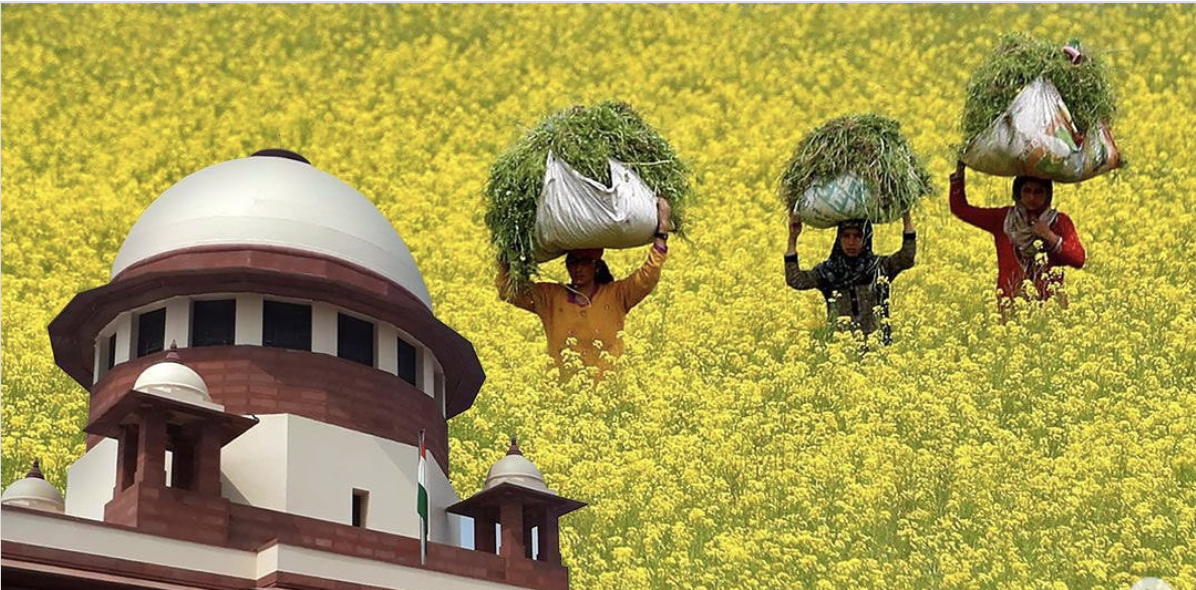
- 13 Jan 2024
Why is it in the News?
The Supreme Court recently questioned the Centre on why reports of the court-appointed Technical Experts Committee (TEC) on the biosafety of genetically modified (GM) crops were not looked into by the Genetic Engineering Appraisal Committee (GEAC).
Context:
- The Supreme Court has raised concerns about the approval process for the transgenic mustard hybrid DMH-11, developed by Delhi University with herbicide-tolerant traits through genetic modification.
- The Genetic Engineering Appraisal Committee (GEAC) had recommended its environmental release in 2022, but the court questioned whether the reports from the court-appointed Technical Experts Committee (TEC) were adequately considered before approval.
- DMH-11 contains two alien genes isolated from a soil bacterium called Bacillus amyloliquefaciens.
- Indian scientists improvised the barnase/barster male sterility technique to produce the DMH-11.
-
- Barnase/barster male sterility technique is a 1990s breeding innovation technique pioneered in Belgium.
- Indian scientists arranged the genes in a way that will allow a large number of high-yielding varieties of mustard to be developed, which is normally not possible.
- Genetically Modified Organisms (GMOs) undergo genome alterations, and transgenic organisms result from the introduction of foreign DNA sequences.
- Approval process for transgenic crops:
-
- Safety assessments by committees are conducted before the open field tests.
- Transgenic plants must be better than non-GM variants and environmentally safe for commercial clearance.
- GEAC recommends environmental release.
- Final approval by MoEFCC.
- Benefits of GM crops:
-
- Resistance against plant diseases.
- Improved yields
- Increased food security.
About the Genetic Engineering Appraisal Committee (GEAC):
- Establishment: GEAC operates as a statutory body mandated by the Environment Protection Act of 1986.
- Responsibility: It holds the responsibility for evaluating proposals concerning the environmental release of Genetically Modified (GM) organisms and associated products.
- GEAC operates under the purview of the Ministry of Environment, Forest and Climate Change.
India gears up for HPV vaccine drive against cervical cancer (Indian Express)
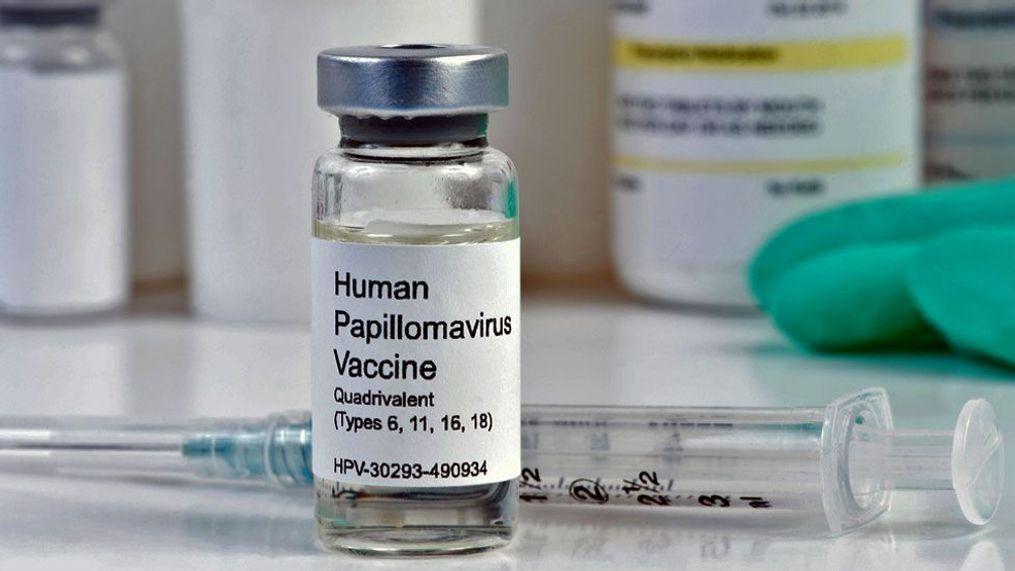
- 13 Jan 2024
Why is it in the News?
In a bid to reduce cases of cervical cancer, the government is likely to roll out an immunisation campaign against Human Papillomavirus (HPV) in the second quarter of the year.
What Is Cervical Cancer?
- Cervical cancer starts in the cells lining the cervix -- the lower part of the uterus (womb).
- Cancer starts when cells in the body begin to grow out of control.
- It typically develops slowly, primarily caused by persistent infection with certain high-risk types of human papillomavirus (HPV).
- Human papillomavirus (HPV) is a common sexually transmitted infection which can affect the skin, genital area and throat.
- Women living with HIV are 6 times more likely to develop cervical cancer compared to women without HIV.
- Cervical cancer can be cured if diagnosed at an early stage and treated promptly.
- According to WHO, countries around the world are working to accelerate the elimination of cervical cancer in the coming decades, with an agreed set of three targets to be met by 2030.
How does the vaccine prevent cancers?
- The quadrivalent vaccines, including the Serum Institute of India’s Cervavac, prevent the entry of four of the most common types of HPV 16, 18, 6 and 11 thereby preventing infections, genital warts, and eventually cancer.
- At least 14 HPV types have been identified to have the potential to cause cancer.
-
- Among these, HPV types 16 and 18 are considered to be the most oncogenic, causing about 70 per cent of all cervical cancer cases globally.
- Universal immunisation of girls also reduces the transmission of the infection to boys and protects them from other cancers.
Who should get the HPV vaccine?
- The vaccine has to be administered to adolescent girls before they are sexually active.
- This is because the vaccine can only prevent the entry of the virus.
- “HPV is a very common infection and 90% of sexually active women already have it.
- Other than that, the response to the vaccine is also better in adolescents.
- This is the reason a booster is needed for girls over the age of 15 years who get the shot.
- Although not covered by the planned government campaign, the vaccine can also be administered to adolescent boys and is recommended for men who have sex with men.
Why is an HPV vaccination campaign important?
- More than 95% of all cervical cancer cases are linked to persistent infection with certain high-risk strains of HPV.
- What this essentially means is vaccination can be effectively used to prevent the infection and thereby cervical cancer cases.
- This is especially necessary in a country like India which accounts for nearly a fifth of the cervical cancer cases globally.
-
- India reports around 1.25 lakh cases and about 75,000 deaths each year.
- “The vaccine is 97% effective in preventing cervical cancer. This is the reason more than 100 countries have now implemented HPV vaccination programmes and they have seen a decline in the incidence as well.
Ganga mission gets the power to allow treated sewage into water bodies (Indian Express)
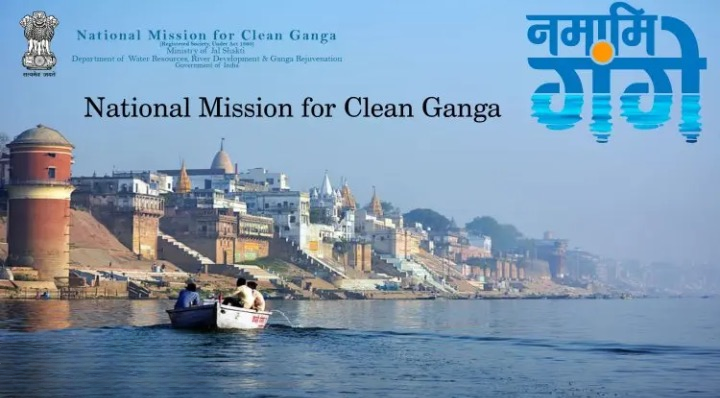
- 12 Jan 2024
Why is it in the News?
The National Mission for Clean Ganga (NMCG), the Centre’s nodal agency responsible for the abatement of pollution in river Ganga and its tributaries, has assumed new powers under which it may now permit the discharge of treated sewage and effluent that conforms to the prescribed “norms” into the river, canal or water bodies.
About the National Mission for Clean Ganga (NMCG):
- The National Clean Ganga Mission (NMCG) is a flagship programme developed by the National Council for the Rejuvenation, Protection and Management of the Ganga River, also known as the National Ganga Council.
- It is registered as a society under the Societies Registration Act, 1860.
- It came into existence on August 12th 2011 and is supported by the State-Level Program Management Groups (SPMGs) in Uttar Pradesh, Uttarakhand, Bihar, Jharkhand and West Bengal.
- The Government of India established this body to encourage a coordinated effort by the listed states to tackle the contamination of the Ganga River by offering financial and technological assistance.
Key objectives of the National Mission for Clean Ganga (NMCG):
- The project entails rehabilitating and boosting existing STPs and immediate short-term action to reduce pollution at the exit points on the riverfront in order to control the inflow of sewage.
- To preserve the consistency of the water cycle without altering the fluctuations of the natural season.
- Restore and control surface and groundwater supply.
- Regenerate and preserve the natural flora of the city.
- To preserve and invigorate the aquatic biodiversity and the riparian biodiversity of the Ganga River basin.
- Enable the public to engage in the process of protecting, rejuvenating and maintaining the water.
Major functions of the National Mission for Clean Ganga (NMCG):
- Execution of the National Ganga River Basin Authority (NGRBA) work program
- Integration of the National Ganga River Basin Project supported by the World Bank
- Supervise and manage the execution of projects approved by the Government of India under NGRBA
- To perform some additional research or duties as may be delegated by MoWR, RD & GJ in the context of restoration of the Ganga River
- Layout regulations and procedures for the conduct of NMCG affairs and contribute or revise, vary or amend them as and when required
- Grant or accept financial aid, loan securities or properties of any kind, and undertake and approve the management of any endowment trust, fund or gift that is not incompatible with the objectives of the NMCG.
- Take all such action and take any other action that might seem appropriate or relevant to the accomplishment of the goals of the NGRBA.
Article 30 Not Intended To Ghettoise Minorities, Minority Institution Can Include Others In Administration: Supreme Court In AMU Case Hearing (Indian Express)
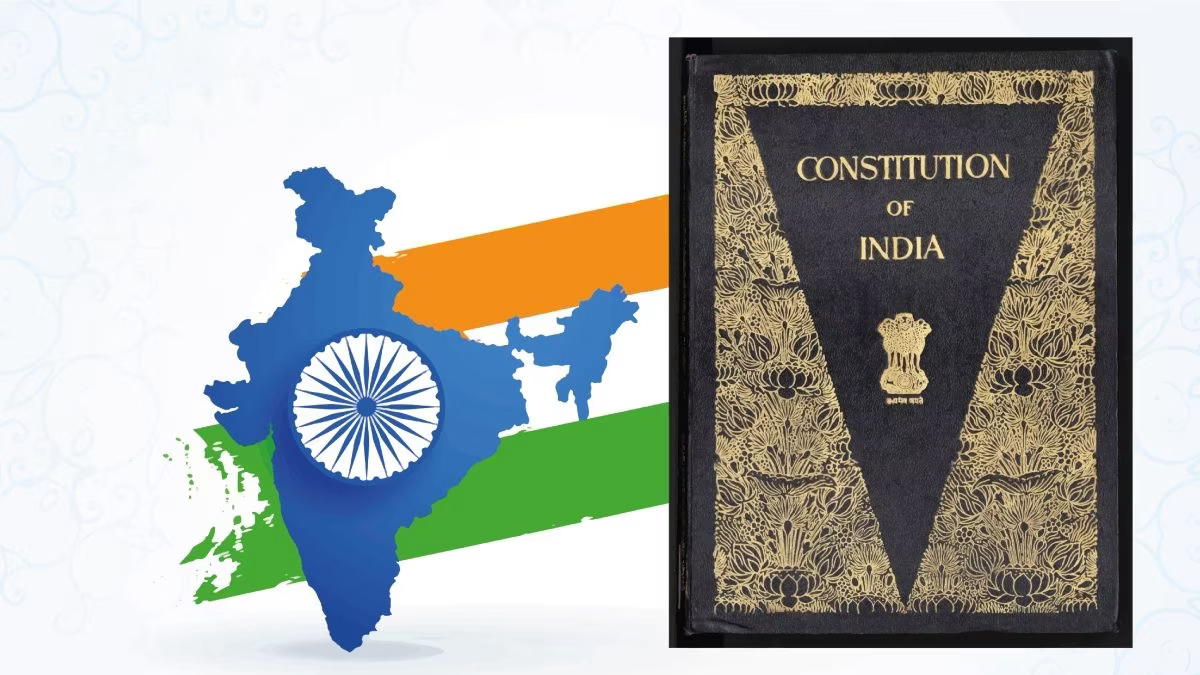
- 12 Jan 2024
Why is it in the News?
In a recent observation, the Supreme Court, headed by Chief Justice of India D Y Chandrachud, highlighted that the right granted to religious and linguistic minorities to establish and administer their educational institutions under Article 30(1) of the constitution was not intended to "ghettoise" them.
What is Article 30 of the Indian Constitution?
- Article 30 of the Indian Constitution states the right of minorities to establish and administer educational institutions.
- It says: “All minorities, whether based on religion or language, shall have the right to establish and administer educational institutions of their choice.”
When was Article 30 adopted?
- Article 30 was adopted on December 8, 1948.
Features of Article 30 of the Indian Constitution:
- Article 30 of the Indian constitution consists of provisions that safeguard various rights of the minority community in the country keeping in mind the principle of equality as well.
- Article 30(1) says that all minorities, whether based on religion or language, shall have the right to establish and administer educational institutions of their choice.
- Article 30(1A) deals with the fixation of the amount for the acquisition of property of any educational institution established by minority groups.
- Article 30(2) states that the government should not discriminate against any educational institution on the ground that it is under the management of a minority, whether based on religion or language while giving aid.
The debate around Article 30:
- On December 8, 1948, the Constituent Assembly debated the need for imparting primary education in one's mother tongue.
- One of the members of the Assembly moved an amendment to restrict the scope of this article to linguistic minorities.
- He argued that a secular state should not recognise minorities based on religion.
- Another member of the Assembly proposed to guarantee linguistic minorities the fundamental right to receive primary education in their language and script.
- He was concerned about the status of minority languages, even in regions which had a significant minority population.
- The Constituent Assembly rejected the proposals.
What is Article 29 of the Indian Constitution?
- Both Article 29 and Article 30 guarantee certain rights to minorities.
- Article 29 protects the interests of minorities by making a provision that any citizen/section of citizens having a distinct language, script or culture has the right to conserve the same.
- Article 29 mandates that no discrimination would be done on the grounds of religion, race, caste, language or any of them.
Concept of Minority in the Indian Constitution:
Religious minorities:
- While Article 30 and Article 29 of the Constitution do not specify 'minorities' in India, it is classified into religious minorities and linguistic minorities.
Religious Minorities in India:
- The basic ground for a community to be nominated as a religious minority is the numerical strength of the community.
- For example, in India, Hindus are the majority community.
- As India is a multi-religious country, it becomes important for the government to conserve and protect the religious minorities of the country.
- Section 2, clause (c) of the National Commission of Minorities Act, declares six communities as minority communities. They are:
- Muslims
- Christians
- Buddhists
- Sikhs
- Jains and
- Zoroastrians (Parsis)
Linguistic Minorities:
- A class or group of people whose mother language or mother tongue is different from that of the majority groups is known as the linguistic minority.
- The Constitution of India protects the interests of these linguistic minorities.
The Process of Selecting Tableaux for the Republic Day Parade (Indian Express)
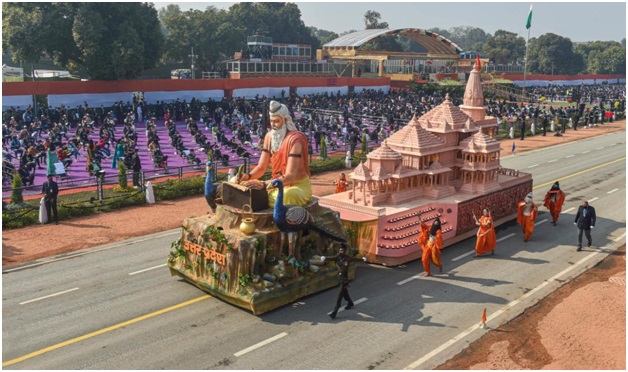
- 11 Jan 2024
Why is it in the News?
India’s Republic Day celebrations are incomplete without colourful tableaux cantering down the Kartavya Path (formally Rajpath). Showcasing India’s rich and diverse cultural heritage, they add colour to the grand event on January 26.
Who can send tableaux to the Republic Day parade?
- According to the Ministry of Defence (MoD), each year, a select number of “State Governments/UT Administrations/Central/Ministries/Departments” send their tableaux to the Republic Day parade.
- There is a rigorous application process which begins with interested parties submitting a concept note, along with design blueprints to the MoD.
How does the selection process work?
- The tableaux proposals received are evaluated by a committee of experts appointed by the MoD, comprising prominent persons in the fields of art, culture, painting, sculpture, music, architecture, choreography, etc. The selection process happens in a phased manner.
- STAGE 1 involves the assessment of the initial proposals and the design sketch/blueprint.
- The Committee sits alongside official representatives of the participants and suggests modifications, if necessary.
- A number of proposals may be rejected in this stage itself.
- STAGE 2 involves the assessment of three-dimensional models of the proposals.
- If the Committee is satisfied with the model, then the tableau is selected and further sent for fabrication.
- The Committee can also suggest changes to models before selection.
- Crucially, while the process is envisioned to be collaborative, the Committee has the final say on which tableaux are chosen, and can order any modifications they feel are required.
What is the basis of selection?
- Selection depends upon a combination of factors including but not limited to visual appeal, impact on the masses, idea/theme of the tableaux, degree of detailing involved in the tableaux, music accompanying the tableaux, local artists used etc.
- Each year, the MoD comes up with an overarching theme, under which, participants can showcase elements relevant to their respective state/UT/department in their tableaux.
- This year’s theme is “Viksit Bharat” (Developed India) and “Bharat: Loktantra ki Matrika” (India: the Mother of Democracy).
- The Defence Ministry also shares the basic guidelines about what all the tableaux can or should include.
- The participating entities must engage “young qualified designers from renowned institutions”, electronic display walls for a bright display of images or content, moving elements using robotics or mechatronics, 3D printing could be used for certain elements, use of augmented or virtual reality, and special effects to improve the optics and visual effects of the tableau.
- Extra weightage is given to tableaux which conform to these guidelines.
- Importantly, the tableaux of two different states/ UTs must not be too similar, and eco-friendly materials must be used for their construction.
Launch of the Traditional Medicine Morbidity codes of Ayurveda, Siddha and Unani Chapter in International Classification of Diseases (ICD) 11 as Module 2 (PIB)
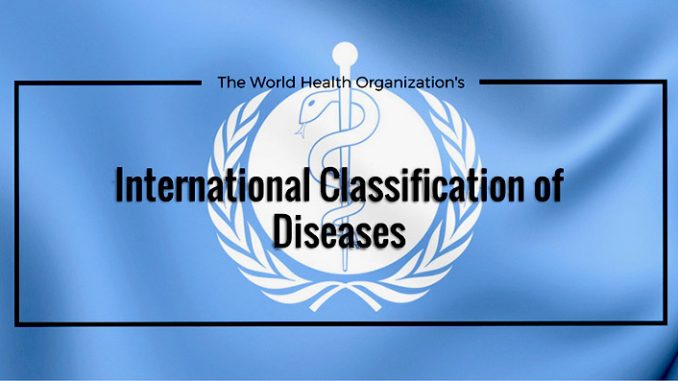
- 10 Jan 2024
Why is it in the News?
The launch event for Module 2 of the World Health Organization's International Classification of Diseases (ICD) 11 TM Morbidity Codes is scheduled to take place in New Delhi on January 10, 2024.
What is the International Classification of Diseases?
- Developed by the World Health Organization (WHO), the International Classification of Diseases (ICD) serves as a global standard for classifying diseases.
- The existing global data on diseases is primarily rooted in modern biomedicine practices, guiding diagnoses within healthcare systems worldwide.
- ICD plays a significant role on a global scale, offering crucial insights into the prevalence, causes, and consequences of human diseases and mortality.
- It achieves this by incorporating reported and coded data, forming the basis for clinical terms in health records and disease statistics across primary, secondary, and tertiary care, as well as cause-of-death certificates.
- The data and statistics derived from ICD coding contribute to various essential functions, including supporting payment systems, aiding in service planning, facilitating quality and safety administration, and driving health services research.
- Moreover, the standardized data collection associated with ICD categories allows for large-scale research initiatives.
- It's important to note that the WHO ICD series currently does not include the classification of data and terminology related to diseases based on Ayush systems such as Ayurveda, Siddha, Unani, etc.
- The Central Bureau of Health Intelligence (CBHI), operating under the Ministry of Health and Family Welfare, serves as the WHO Collaboration Centre for ICD-related activities.
- The CBHI plays a crucial role in collecting and disseminating data on various diseases and mortality.
What is the TM2 module of ICD11?
- The Ministry of Ayush has introduced the Code for Ayurveda, Siddha, and Unani Medicine, utilizing the National Ayush Morbidity and Standardised Electronic Portal (NAMASTE).
- In partnership with the World Health Organization (WHO), the Ministry of Ayush has collaboratively developed a comprehensive categorization of data and terminology about diseases based on Ayush systems, namely Ayurveda, Siddha, and Unani, within the TM2 module of the ICD11 series.
- Furthermore, the Ministry of Ayush has formalized this collaboration by signing a Donor Agreement with the World Health Organization for the implementation of these initiatives.
iDEX innovators to exhibit futuristic technologies at Vibrant Gujarat summit (ET)
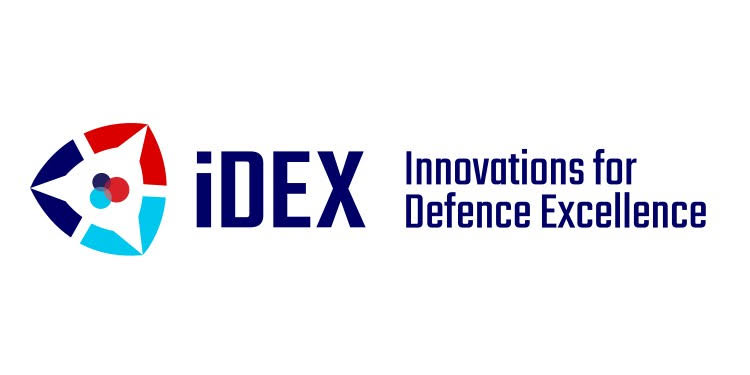
- 08 Jan 2024
Why is it in the News
The Ministry of Defence on Sunday said that Innovations for Defence Excellence-Defence Innovation Organization (iDEX-DIO) will participate in the 10th edition of the Vibrant Gujarat Summit from January 10 to 12 in Gandhinagar.
About iDEX:
- iDEX (Innovations for Defence Excellence), the flagship scheme of the Ministry of Defence, Govt of India launched by Prime Minister Modi in 2018.
- The objective of the scheme is to cultivate an innovation ecosystem in the Defence and Aerospace sector by collaborating with startups, innovators, MSMEs, incubators, and academia.
- iDEX offers grants and support for R&D with significant potential for future adoption in Indian defense and aerospace.
- It is currently engaged with around 400+ Startups and MSMEs, till now procurement of 31 items worth over Rs 2000 Cr. has been cleared.
- Recognized as a game-changer in the defense ecosystem, iDEX has received the PM Award for Innovation in the defense sector.
What is the Vibrant Gujarat Summit?
- The Government of Gujarat organizes the Vibrant Gujarat Global Summit, also known as Vibrant Gujarat, a biennial global business event held in the state of Gujarat, India.
- It attracts business leaders, investors, corporations, thought leaders, and policymakers, serving as a platform to understand and explore business opportunities in Gujarat.
- Launched in 2003 and now held every two years, the summit aims to promote Gujarat as an attractive investment destination, fostering partnerships and collaborations across various sectors.
- Industry associations, both nationally and internationally, support the summit, making it one of Gujarat's crucial economic forums.
- The event creates a platform for business leaders, policymakers, and investors to explore opportunities for investment, collaboration, and partnership in sectors such as energy, manufacturing, infrastructure, information technology, agriculture, healthcare, and more.
- It facilitates discussions, negotiations, and agreements in these key sectors.
- The Tenth edition of Vibrant Gujarat Global Summit is being held from 10 to 12 January 2024 in Gandhinagar, Gujarat.
- Its theme is 'Gateway to the Future'.
- This Tenth Edition of the Summit will celebrate “20 Years of Vibrant Gujarat as the Summit of Success”.
- There are 34 Partner countries and 16 Partner organizations for this year’s Summit.
- Further, the Ministry of Development of North-Eastern Region will utilize the Vibrant Gujarat platform to showcase investment opportunities in the North-Eastern regions.
‘Deep tech’ policy to be sent to Cabinet for approval, says scientific adviser (The Hindu)
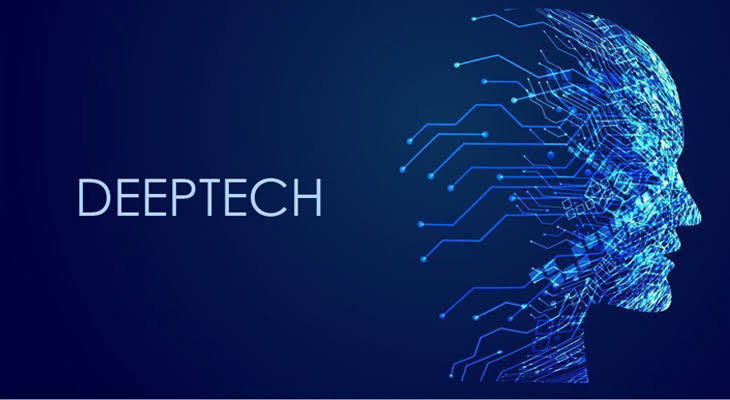
- 06 Jan 2024
Why is it in the News
The government will be sending a note, on a new ‘deep tech’ policy for India in the coming weeks to the Union Cabinet for approval, said Prof. Ajay Kumar Sood, Principal Scientific Advisor at a public event on January 5.
Key Details in the Draft NDTSP:
- The Draft National Deep Tech Startup Policy (NDTSP) stands out through its key highlights, enhancing the existing Startup India policies by fostering an environment conducive to the growth of deep tech startups.
- It addresses the unique challenges these startups face.
- The draft NDTSP introduces new policy instruments and recommends essential policy changes under several themes, including nurturing research, development, and innovation, strengthening the intellectual property regime, facilitating access to funding, enabling shared infrastructure and resource sharing, creating supportive regulations, standards, and certifications, attracting human resources, initiating capacity building, promoting procurement and adoption, ensuring policy and program interlinkages, and sustaining deep tech startups.
India's 'Deep Tech' Startup Ecosystem faces significant challenges as outlined in the draft 'deep tech' policy:
- As of May 2023, the DPIIT recognizes 10,298 startups, but only about 10% fall under the 'deep tech' category, indicating a need for more effort and support.
- A major hurdle is the inadequate funding for 'deep tech' startups. Unlike fintech or retail software startups that require comparatively smaller funds, 'deep tech' startups demand significantly larger financial investments.
- This financial gap poses a notable obstacle to their growth and development.
What is Deep Tech?
- Deep technology, often referred to as "deep tech," encompasses advanced technologies rooted in substantial scientific or engineering innovations.
- These innovations are considered "deep" due to their sophisticated and highly advanced nature, providing solutions to complex challenges or issues.
- Examples of breakthroughs in deep tech include genomics, robotics, nanotechnology, and clean energy initiatives emerging from research labs and academia.
- Deep-tech startups and companies are characterized by their pursuit of solutions to intricate problems through technologies and processes involving lengthy research and development cycles.
- Importantly, businesses and startups that rely on easily replicable ideas do not qualify as deep tech startups.
- Deep tech stands apart from high tech, which denotes a broader scope of technical innovations and advancements.
- Unlike high-tech companies, those in deep tech are primarily focused on profound scientific or engineering breakthroughs.
10th century Kadamba inscription written in Kannada, Sanskrit found in Goa (The Hindu)
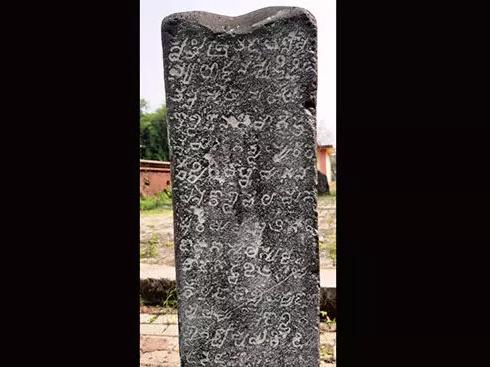
- 05 Jan 2024
Why is it in the News?
An inscription written in Kannada and Sanskrit and said to be of 10th century A.D. Kadamba period has been discovered in the Mahadeva temple at Cacoda in southern Goa.
About the Kadamba Inscription:
- Discovery and Study of the Inscription: The inscription illuminates the Kadamba period in Goa, commencing with the auspicious phrase 'Be it well' (Swasthi Shri).
- It was discovered between the temples of Mahadev and Sateri-Betal at Cacoda in Goa.
- Epigraphic Details: It chronicles the story of Gundayya, Talara Nevayya's son, who vowed to fulfill his father's desire by capturing a Gopura in the port of Goa.
- The inscription is engraved in Kannada and Nagari characters.
- Its literary style mirrors the Talangre inscription of Jayasimha I from the same period.
- The deciphering of the Kadamba stone inscription has brought to light its historical and socio-cultural importance.
- Historical Narrative: The Kadambas of Goa served as subordinates to the Chalukyas.
- Kadamba Shasthadeva, appointed as Mahamandaleshwara of Goa by Chalukyan emperor Tailapa II, played a key role in overthrowing the Rashtrakutas.
- In 960 A.D., Kadamba Shasthadeva conquered Chandavara and the port of Gopakapattana (present Goa).
- Gundayya, Talara Nevayya's son, actively participated in the battle, successfully securing the port but sacrificing his own life.
- To commemorate his son's heroic fight, Talara Nevayya erected a memorial stone with the inscription in the Mahadev temple at Cacoda.
- Socio-cultural Importance: Cacora village, situated near navigable waterways, establishes connections to the Upper Ghat region through the ancient route of Diggi ghat leading to Karnataka.
- Currently a census town under the Municipality of Curchorem Cacora in Goa, Cacoda hosts the Mahadev temple with its affiliated deities, showcasing the cultural richness and historical significance of the area.
How graphene semiconductors can revolutionise electronics and computing (Front Line)

- 05 Jan 2024
Why is it in the News
Recently, Scientists have made a breakthrough in electronics, creating the world’s first functional semiconductor made from graphene—a material known for being tough, flexible, light and with a high resistance.
What is Graphene?
- Graphene is a single sheet of carbon atoms—a 2D material held together by the strongest chemical bonds known.
- These carbons are arranged in tessellated hexagons, much like honeycomb.
- It is an incredibly strong material. It’s so strong we can hold up a football with just one atomic layer of graphene.
- Graphene is also incredibly flexible, making it ideal for use in electrical devices and batteries, or even printed on glass, plastics or fabrics.
Keys Properties of Graphene:
- Strength: it is the strongest material ever measured, about 200 times stronger than steel.
- This is because the strong covalent bonds between carbon atoms in the hexagonal lattice make it very difficult to break apart.
- Conductivity: Graphene is also an excellent conductor of heat and electricity.
- In fact, it is the best conductor of heat at room temperature of any known material.
- This is because the electrons in graphene can move freely through the lattice without encountering any obstacles.
- Transparency: Graphene is almost completely transparent to light, absorbing only about 2.3% of visible light.
- This makes it a promising material for use in transparent electronics and solar cells.
- Flexibility: Graphene is also incredibly flexible, and can be bent and folded without breaking.
- This makes it a good candidate for use in flexible electronics, such as wearable devices.
- These properties make graphene a potential game-changer for a wide range of industries, including electronics, energy, transportation, and medicine.
Potential Applications of Graphene:
- Electronics: Graphene could be used to make transistors that are much faster and more efficient than the silicon transistors used in today's electronics.
- This could lead to the development of smaller, lighter, and more powerful devices.
- Energy: Graphene could be used to make solar cells that are more efficient at converting sunlight into electricity.
- It could also be used to make batteries that are lighter and have longer lifespans.
- Transportation: Graphene could be used to make lighter and stronger airplanes and cars.
- It could also be used to make more efficient batteries for electric vehicles.
- Medicine: Graphene could be used to make sensors that can detect diseases at an early stage.
- It could also be used to deliver drugs directly to diseased cells.
Drawback of Graphene:
- Graphene has major drawbacks, which has prevented its use in electronics.
- One major issue is known as the “band gap problem.”
- The band gap is a crucial electronic property that allows semiconductors to switch on and off.
- Graphene didn’t have a band gap—until now.
- Despite its promise, graphene is still a relatively new material and there are a number of challenges that need to be overcome before it can be widely used.
- One challenge is that it is difficult and expensive to produce large sheets of high-quality graphene.
- Another challenge is that graphene is very sensitive to its environment, and its properties can be easily affected by the presence of even small amounts of impurities.
- However, researchers are making rapid progress in overcoming these challenges, and it is likely that graphene will become a common material in the near future.
- With its unique properties, graphene has the potential to revolutionize many different industries and improve our lives in countless ways.
PM’s school becomes base for week-long residential programme for students (The Hindu)
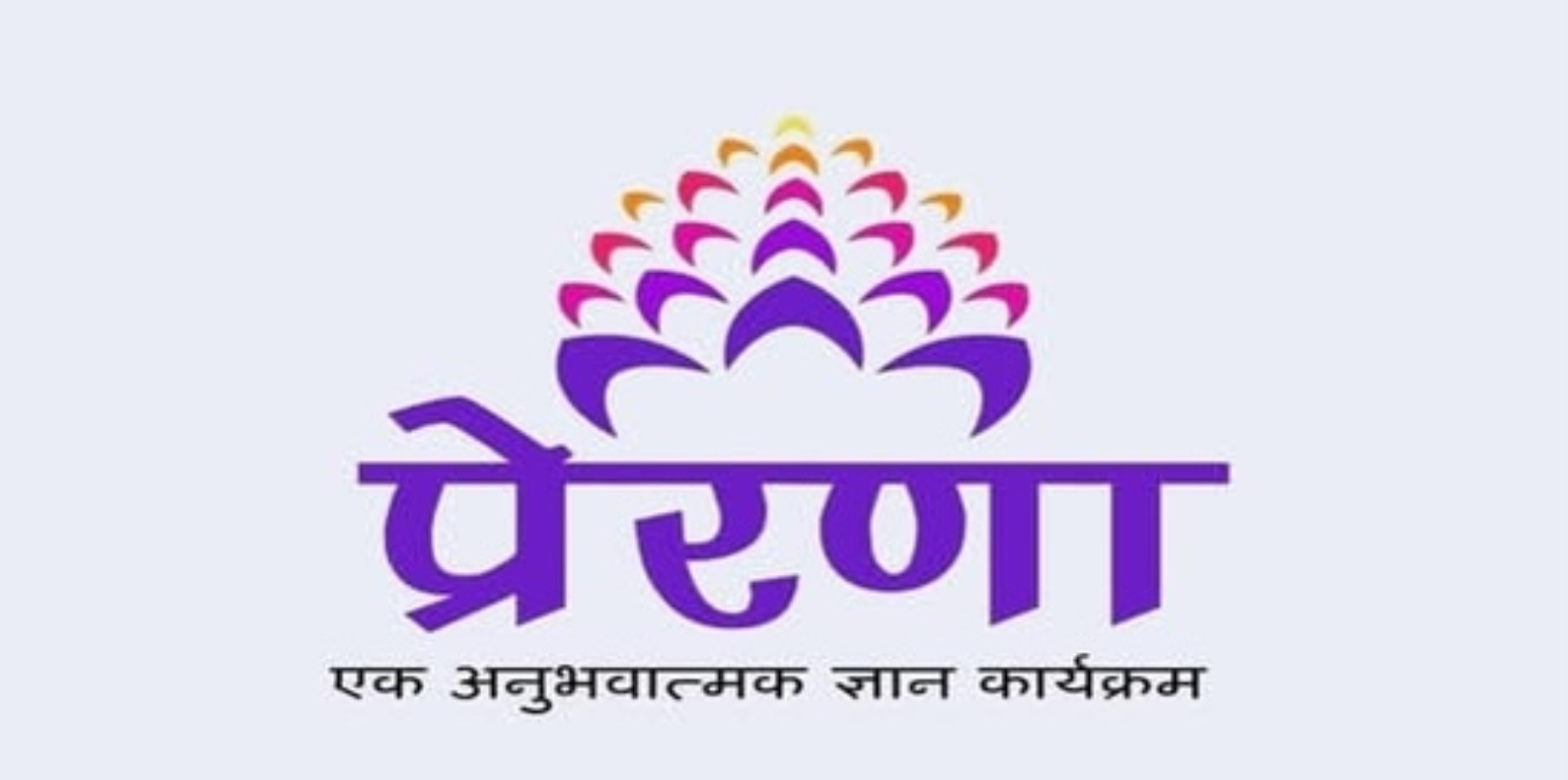
- 05 Jan 2024
Why is it in the News
The Ministry of Education on Thursday launched ‘Prerana’, an experiential learning programme, which will operate from the vernacular school in Prime Minister Narendra Modi’s birthplace Vadnagar, Gujarat where Mr. Modi studied when he was a student.
Context:
- The Department of School Education & Literacy, operating under the Ministry of Education, Government of India, has unveiled 'Prerana: An experiential learning program.'
- This innovative initiative is specifically crafted to deliver a profound, distinctive, and motivational learning experience to its participants.
- The overarching goal of this program is to cultivate and nurture leadership qualities among the individuals involved, thereby contributing to their holistic development and empowering them with the skills necessary for effective leadership in various contexts.
What is ‘Prerna’ Program?
- Prerana is driven by a strong commitment to integrate principles of Indian education system and the philosophy of value-based education which is a corner stone of the National Education Policy (NEP) 2020.
- It is a week-long residential program for selected students of class IX to XII.
- It is an experiential and inspirational learning program for students with the best-in-class technology where heritage meets innovation.
- A batch of 20 selected students (10 boys and 10 girls) will attend the program, every week from various parts of the country.
- Prerana program will run from a Vernacular School, established in 1888, in one of the oldest living cities of India, Vadnagar, district Mehsana, Gujarat.
- The curriculum of Prerana School prepared by IIT Gandhi Nagar is rooted in nine value based themes:
- Swabhiman and Vinay
- Shaurya and Sahas
- Parishram and Samarpan
- Karuna and Sewa
- Vividhta and Ekta
- Satyanishtha and Shuchita
- Navachar and Jigyasa
- Shraddha aur Vishwas, and
- Swatantrata and Kartavya.
- The program based on above themes will inspire the youth and foster respect for Bharat's unity in diversity, embodying the spirit of "Vasudhaiva Kutumbakam" and will contribute by making the youth of today, a flame holder for Viksit Bharat.
- Towards this endeavour, the participants will be guided by mentors from prestigious institutions.
- Selection Procedure: Students can register through the portal, wherein applicants can fill the requisite details to be a part of the ambitious and aspirational Prerana program.
- The registered applicants will go through a selection process, as prescribed on the portal.
- Applicants can also join the selection procedure conducted at the School/block level, on designated ‘Prerana Utsav’ day, through various activities based on the ethos of Prerana to evaluate for well rounded personalities keen to shape the future of our nation.
- Upon selection, the 20 participants (10 boys and 10 girls) will be attending the Prerana program and embark on a journey of inspiration, innovation, and self-discovery.
- After the program, the participants will carry the ethos of Prerana into their respective communities, become change makers and spark positive change to inspire others.
Ministry of Environment, Forest, and Climate Change submits proposals for Wetland City Accreditation under the Ramsar Convention on Wetlands for cities of Indore, Bhopal and Udaipur (The New Indian Express)
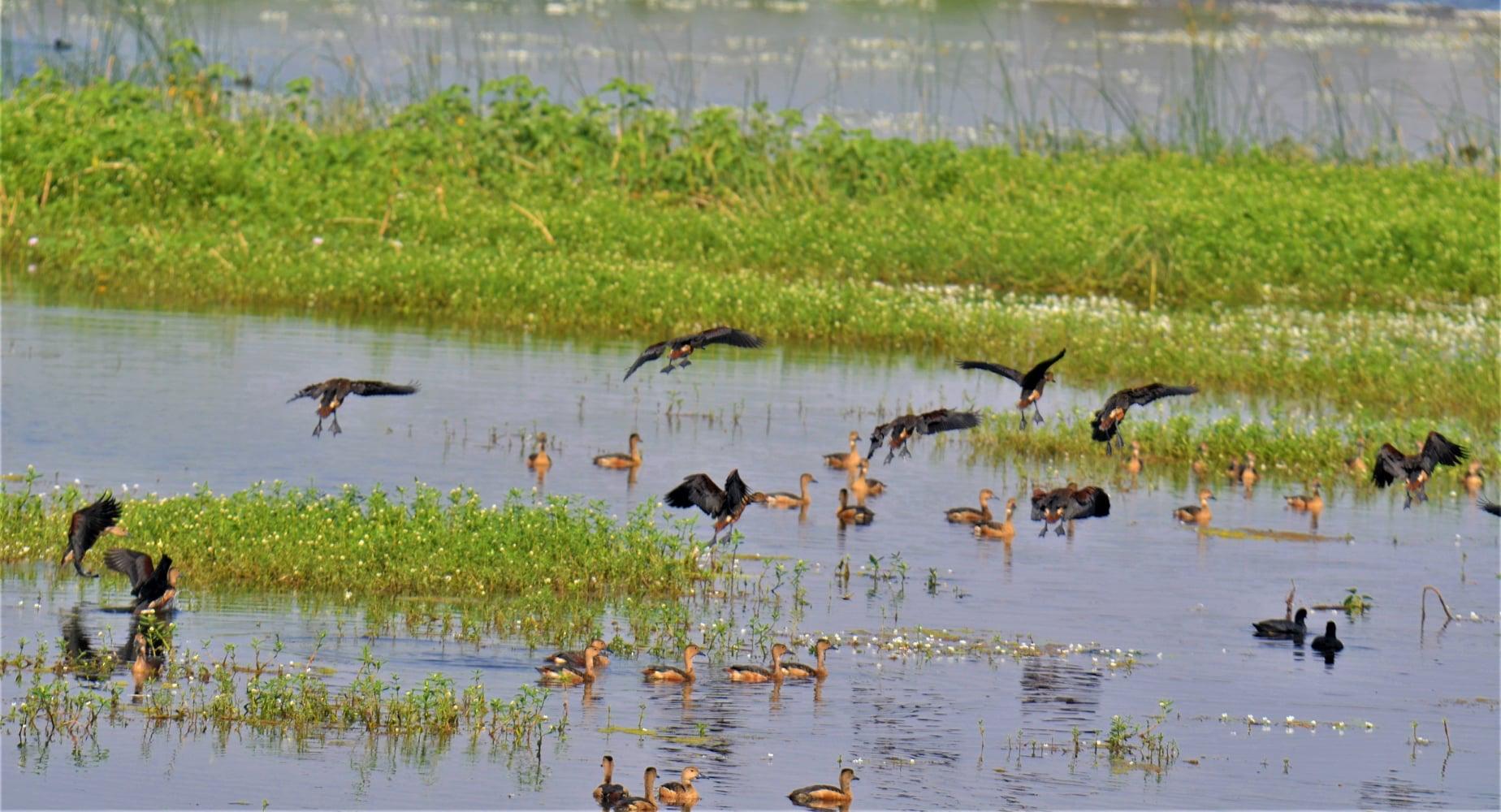
- 05 Jan 2024
Why is it in the News
MoEF&CC has submitted three nominations from India for Wetland City Accreditation (WCA) of Indore (Madhya Pradesh), Bhopal (Madhya Pradesh) & Udaipur (Rajasthan) under the Ramsar Convention on Wetlands.
What is Wetland City Accreditation (WCA)?
- Recognizing the importance of wetlands in urban and peri-urban environments and to take appropriate measures to conserve and protect these wetlands, the Ramsar Convention during COP12 held in the year 2015 approved a voluntary Wetland City Accreditation system under Resolution XII.10.
- It recognizes cities which have taken exceptional steps to safeguard their urban wetlands.
- The Wetland City Accreditation scheme aims to further promote the conservation and wise use of urban and peri-urban wetlands, as well as sustainable socio-economic benefits for local populations.
- Additionally, the Accreditation seeks to encourage cities that are close to and dependent on wetlands.
- Primarily Wetlands of International Importance, but also wetlands with other conservation category status, to develop and strengthen a positive relationship with these valuable ecosystems.
- To be formally accredited, a candidate for the Wetland City Accreditation should satisfy the standards used to implement each of the six international criteria mentioned Operational Guidance for WCA of the Ramsar Convention on Wetlands.
- This voluntary scheme provides an opportunity for cities that value their natural or human-made wetlands to gain international recognition and positive branding opportunities for their efforts in demonstrating strong positive relationships with wetlands.
- The ongoing Amrit Dharohar initiative of the MoEF&CC announced as part of this year’s budget also aims to achieve similar goals by promoting unique conservation values of Ramsar Sites.
- In this context, WCA will not only generate public awareness about conservation of urban and peri-urban wetlands but will also help in implementation of Amrit Dharohar across the country.
The Three Nominated Cities Include:
- Indore: Founded by Holkars, Indore is the cleanest city in India and the recipient of India’s Smart City Award 2023 for its best sanitation, water and urban environment.
- Sirpur Lake, a Ramsar Site in the city, has been recognised as an important site for water bird congregation and is being developed as a Bird Sanctuary.
- A strong network of more than 200 wetland mitras is engaged in bird conservation and sensitising local community to protect Sarus Crane.
- Bhopal: One of the cleanest cities in India that has proposed conservation zones around the wetlands in its draft City Development Plan 2031.
- Bhoj Wetland, Ramsar Site is the city’s lifeline, equipped with the world-class wetlands interpretation centre, Jal Tarang.
- Additionally, the Bhopal Municipal Corporation has a dedicated Lake Conservation Cell.
- A network of more than 300 wetland mitras is engaged in wetland management and conservation of Sarus Crane.
- Udaipur: Located in Rajasthan, the city is surrounded by five major wetlands, namely, Pichola, Fateh Sagar, Rang Sagar, Swaroop Sagar, and Doodh Talai.
These wetlands are an integral part of the city’s culture and identity, help maintain the city’s microclimate, and provide a buffer from extreme events.
Namibian cheetah Aasha gives birth to 3 cubs in Kuno; ‘indicator that animals are acclimatising’ (Indian Express)
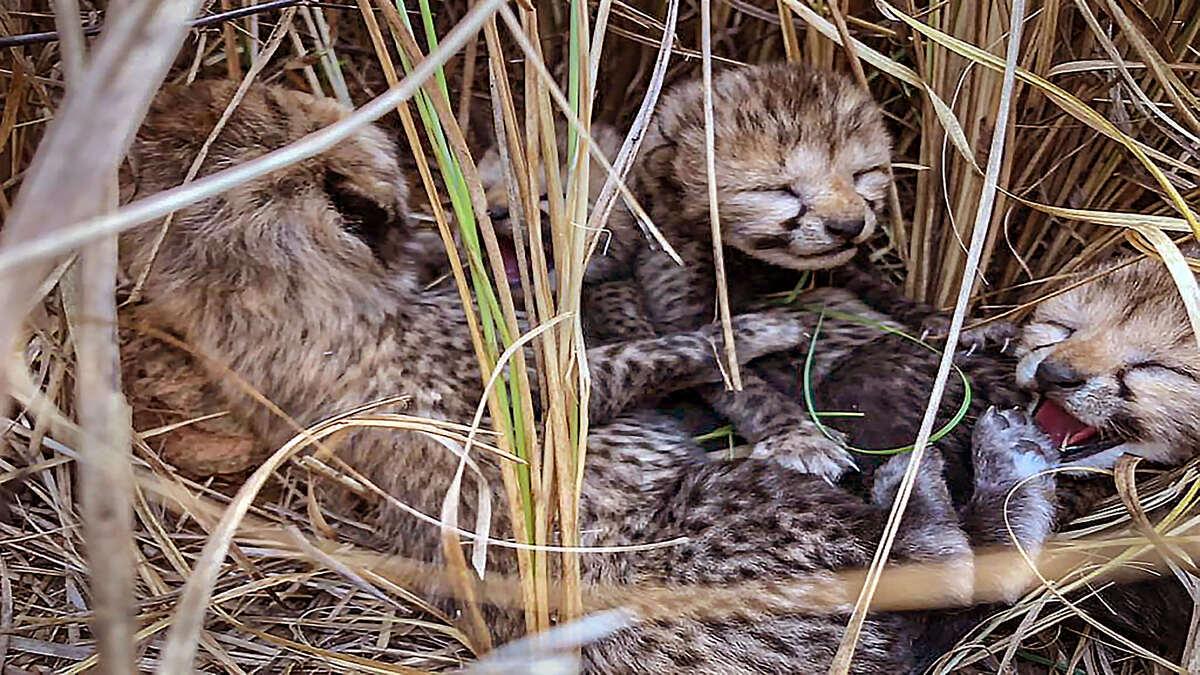
- 04 Jan 2024
Why is it in the News?
Recently, a Namibian cheetah named Aasha has given birth to three cubs at Kuno National Park in Madhya Pradesh.
About Kuno National Park (KNP):
- Location: Situated in the Sheopur district of Madhya Pradesh, Kuno National Park is nestled near the Vindhyan Hills.
- The park is aptly named after the Kuno River, a significant tributary of the Chambal River that traverses its expanse.
- Originally designated as a wildlife sanctuary, Kuno National Park attained the status of a national park in 2018.
- This transformation aligns with its pivotal role in the 'Action Plan for Introduction of Cheetah in India.'
- Vegetation and Flora: Kuno predominantly features a grassland landscape, punctuated by occasional rocky outcrops.
- The flora encompasses a diverse mix, including dominant species such as Kardhai, Salai, and Khair trees.
- The park boasts a rich composition with 123 tree species, 71 shrub species, 32 exotic and climbing species, and 34 bamboo and grass species.
- Fauna: The protected region of Kuno National Park shelters an array of wildlife, including the jungle cat, Indian leopard, sloth bear, Indian wolf, striped hyena, golden jackal, Bengal fox, and dhole.
- The park also delights bird enthusiasts with a habitat supporting over 120 bird species.
What is Project Cheetah?
- The Wildlife Trust of India started talks in 2009 to bring the cheetah back to India.
- Over five years, 50 cheetahs will be imported from African nations and placed in various national parks as part of the "Action Plan for Reintroduction of Cheetahs in India."
- Prime Site Selection - Kuno Palpur National Park (KNP): Among the surveyed sites in central Indian states, Kuno Palpur National Park (KNP) in Madhya Pradesh emerged as the most suitable location.
- This acclaim is attributed to its conducive habitat and ample prey base.
- KNP is deemed capable of supporting 21 Cheetahs, uniquely standing as a wildlife site where villages have been entirely relocated from within the park.
- Moreover, Kuno offers the prospect of harmoniously accommodating four of India's prominent big cats - tiger, lion, leopard, and Cheetah.
- Additional Recommended Sites: The project identifies other potential sites, including Nauradehi Wildlife Sanctuary (Madhya Pradesh), Gandhi Sagar Wildlife Sanctuary - Bhainsrorgarh Wildlife Sanctuary complex (Madhya Pradesh), Shahgarh bulge in Jaisalmer (Rajasthan), and Mukundara Tiger Reserve (Rajasthan).
- Implementation Progress: As a significant stride in the project's realization, 20 Cheetahs, comprising 8 from Namibia and 12 from South Africa, were introduced to Kuno Palpur National Park last year.
- This marks a historic initiative to establish a free-ranging Cheetah population in India, reviving their presence after a 70-year absence.
PM inaugurates Kochi-Lakshadweep Islands Submarine Optical Fibre Connection (PIB)

- 04 Jan 2024
Why is it in the News?
PM Modi recently, in Kavaratti, Lakshadweep, inaugurated the Kochi-Lakshadweep Islands submarine optical fibre connection (KLI-SOFC) project including various developmental projects worth more than Rs 1,150 crore.
Background-Kochi-Lakshadweep Submarine OFC (KLI) Project:
- The need for digitally connecting the Lakshadweep Islands through a high-capacity submarine cable link with the mainland has been felt for some time.
- Earlier, the only means of communication with the Islands was through Satellite medium, which had limited bandwidth capacity and was not able to meet the growing bandwidth demand.
- In the Kochi-Lakshadweep Islands Submarine Cable (KLI) project submarine cable connectivity from Mainland (Kochi) to eleven Lakshadweep Islands namely, Kavaratti, Agatti, Amini, Kadmat, Chetlet, Kalpeni, Minicoy, Androth, Kiltan, Bangaram and Bitra has been extended.
- The project is funded by the Universal Services Obligation Fund (USOF), Department of Telecommunication.
- Bharat Sanchar Nigam Limited (BSNL) was the Project Executing Agency and the work was awarded to NEC Corporation India Pvt Ltd.
- Major activities related to the project include Marine Route Survey, Submarine Cable laying, Civil Construction of CLS stations, Installation, Testing and Commissioning of End Terminals (SLTE).
- Highlights of the KLI Project:
- Total link distance: 1,868 kilometres.
- Total cost of project: Rs 1072 crore
???????Benefits of the KLI Project:
- The project will play a significant role in achieving the objective of ‘Digital India’ and ‘National Broadband Mission’ and in rolling out various e-governance projects of the Government of India in Lakshadweep Islands.
- E-Governance, Tourism, Education, Health, Commerce and Industries will get a boost
- It will also help in further improvement in the standards of living of the people on the Island and will accelerate overall social and economic development in these areas.
- The population of Lakshadweep Islands will be provided high-speed wireline broadband connectivity.
- High-speed broadband will be provided through FTTH and 5G/4G Mobile networks.
- The bandwidth created under this project will be available to all Telecom Service Providers (TSPs) to strengthen their telecom services in the Lakshadweep Islands.
India, Pakistan exchange list of nuclear installations and facilities (ET)
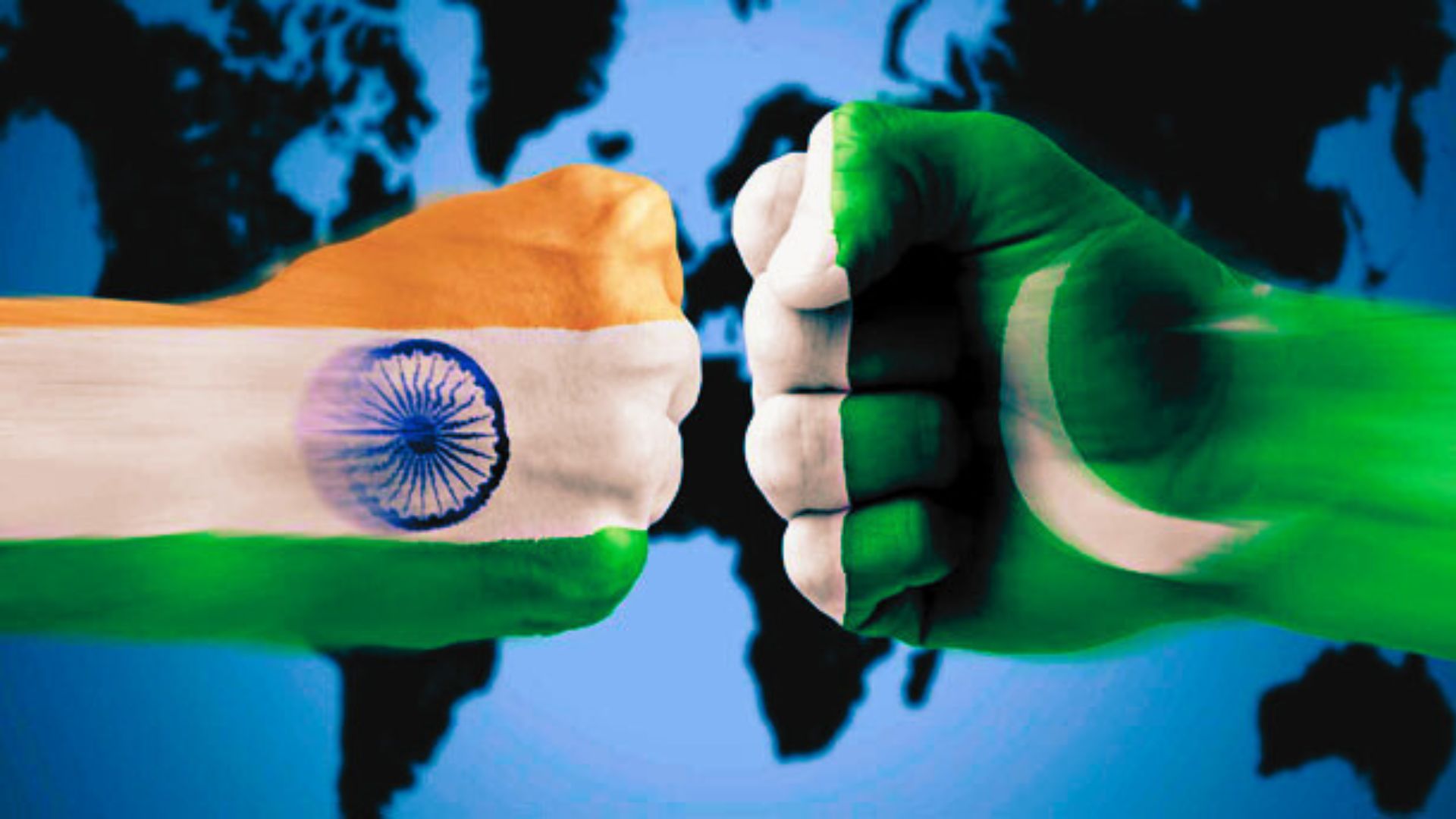
- 02 Jan 2024
Why is it in the News?
India and Pakistan exchanged the list of nuclear installations and facilities, covered under the Agreement on the Prohibition of Attack against Nuclear Installations and Facilities between the two countries.
About the Prohibition of Attack against Nuclear Installations and Facilities:
- The Agreement on the Prohibition of Attack against Nuclear Installations and Facilities, also known as the India-Pakistan Non-Attack Agreement, was signed on 31 December 1988 and became effective on 27 January 1991.
- It was signed by the then Pakistani PM Benazir Bhutto and Indian PM Rajiv Gandhi.
- According to this agreement, both India and Pakistan are required to annually communicate the list of nuclear installations and facilities covered by the agreement on the first of January of each calendar year.
- The agreement stipulates that neither party shall engage, directly or indirectly, in any actions aimed at causing destruction or damage to any nuclear installation or facility in the other country.
- The term 'nuclear installation or facility' encompasses nuclear power and research reactors, fuel fabrication, uranium enrichment, isotopes separation, reprocessing facilities, as well as any other installations involving fresh or irradiated nuclear fuel and materials in any form, along with establishments storing significant quantities of radioactive materials.
Need for the Agreement:
- In 1986, heightened concerns arose when the Indian army conducted a large-scale exercise named 'Brasstacks,' prompting fears of a potential assault on nuclear facilities.
- Subsequently, negotiations ensued between the two nations aimed at fostering an understanding regarding the management of nuclear weapons, ultimately leading to the formulation of the treaty.
Importance of the Agreement:
- Both nations reiterate their dedication to enduring peace and the cultivation of amicable and harmonious bilateral relations.
- They recognize the significance of confidence-building measures in fostering such relations built on mutual trust and goodwill.
- The potential consequences of even a limited nuclear exchange between India and Pakistan are grave, with the potential to cause the loss of 20 million lives within a week.
Index of Eight Core Industries (ICI) increases by 7.8% (provisional) in Nov 2023 as compared to the Index of Nov 2022 (PIB)

- 30 Dec 2023
Why is it in the News?
The combined Index of Eight Core Industries (ICI) increased by 7.8 per cent (provisional) in November 2023 as compared to the Index of November 2022.
About the Index of Industrial Production (IIP):
- The IIP is a comprehensive index that assesses the growth rate of industry groups, categorized into:
- Broad sectors: Mining, Manufacturing, and Electricity.
- Use-based sectors: Basic Goods, Capital Goods, and Intermediate Goods.
- In India, the initiation of computing the IIP predates international recommendations. The Central Statistical Organization, now known as the National Statistics Office (NSO), assumed the responsibility for compilation and publication in 1951.
- The Ministry responsible for this process is the Ministry of Statistics and Programme Implementation.
Key Information:
- Base Year: The base year was changed to 2011-12 from 2004-05 in the year 2017.
- Sources of Data: The NSO compiles the IIP using secondary data from 14 source agencies across various Ministries/Departments and their attached/subordinate offices.
- The Department of Industrial Policy and Promotion (DIPP) contributes a significant portion of the data for the calculation.
- Utilization of IIP Data: The Industrial Production Index (IIP) is a valuable resource employed by several entities, including government bodies like the Ministry of Finance and the Reserve Bank of India (RBI), as well as private firms and analysts.
- It serves as a critical tool for analytical purposes.
- Additionally, the data is instrumental in computing the quarterly Gross Value Added (GVA) of the manufacturing sector within the Gross Domestic Product (GDP).
About the Index of Eight Core Sectors:
- The Index of Eight Core Industries (ICI) assesses the combined and individual production performance of eight vital industries.
- Together, these sectors account for 40.27% of the items measured in the Index of Industrial Production (IIP).
- Listed in descending order of their weightage, the eight core industries are:
- Refinery Products, Electricity, Steel, Coal, Crude Oil, Natural Gas, Cement, and Fertilizers.
Minister Bhupendra Yadav launches NTPS, a unified system for forest goods’ transport across India (Indian Express)
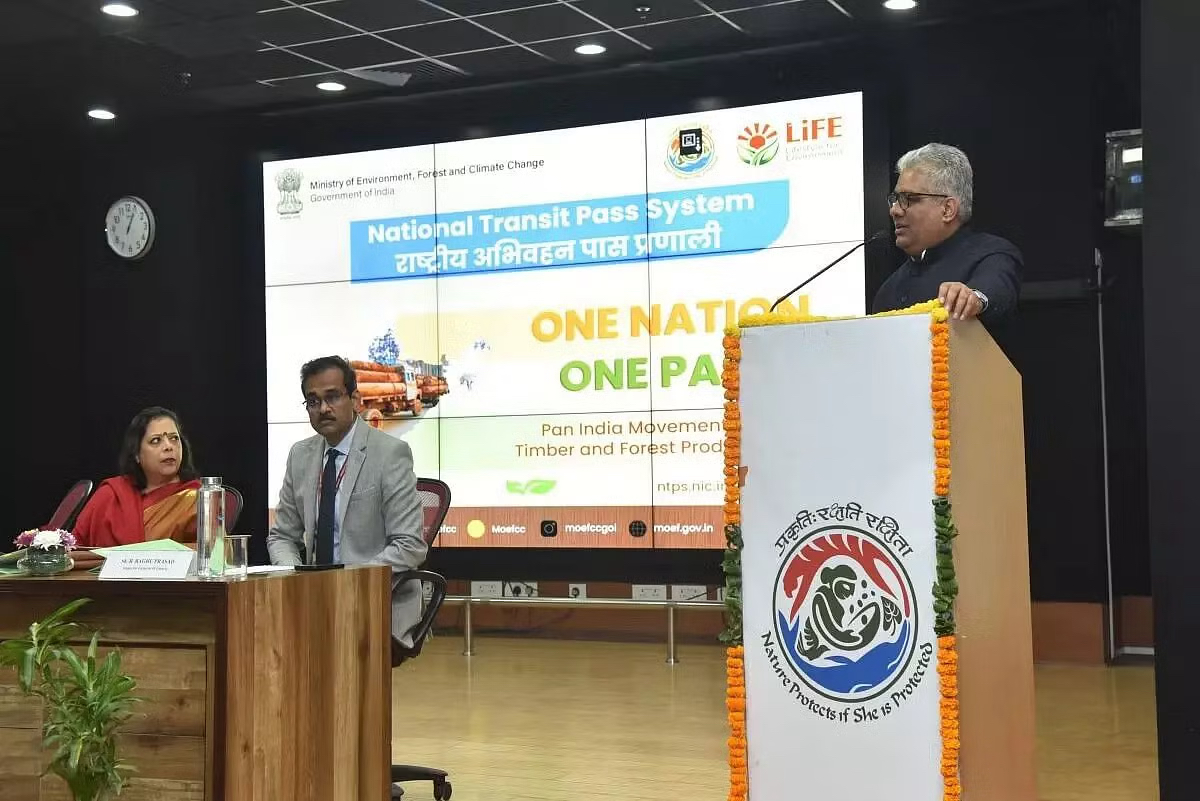
- 30 Dec 2023
Why is it in the News?
The central government on Friday launched the National Transit Pass System (NTPS) to facilitate seamless transit of forest goods across the country through a single permit.
About the National Transit Pass System (NTPS):
- The National Transit Pass System (NTPS) is established to facilitate the smooth transit of timber, bamboo, and other forest produce across the country.
- Currently, transit permits are issued based on state-specific rules, leading to a fragmented system.
- The NTPS aims to implement a "One Nation-One Pass" regime, ensuring seamless transit across the entire nation.
- This initiative streamlines the issuance of timber transit permits by providing a unified online platform for tree growers and farmers engaged in agroforestry, contributing to a more business-friendly environment.
Key Features of NTPS:
- Unified Online Platform: The NTPS offers a unified, online mode for obtaining timber transit permits, simplifying the process for tree growers and farmers involved in agroforestry nationwide.
- Record Management: It manages records for both inter-state and intra-state transportation of timber, bamboo, and other forest produce from various sources, including private lands, government-owned forests, and private depots.
- QR Coded Transit Permits: The system generates QR coded transit permits, enabling check gates across states to verify the permits' validity and ensure seamless transit.
- User-Friendly Applications: NTPS provides desktop and mobile applications for easy registration and permit applications, enhancing user convenience.
- Regulated Species and Exemptions: Transit permits are issued for regulated tree species, while users can self-generate No Objection Certificates for exempted species.
- State Participation: Presently, 25 States and Union Territories have adopted the unified permit system, simplifying interstate business operations for producers, farmers, and transporters.
- Nodal Ministry: The NTPS operates under the guidance of the Ministry of Environment, Forest and Climate Change.
Horticulture boost: Litchi cultivation has expanded to 19 Indian states, according to officials (DownToEarth)
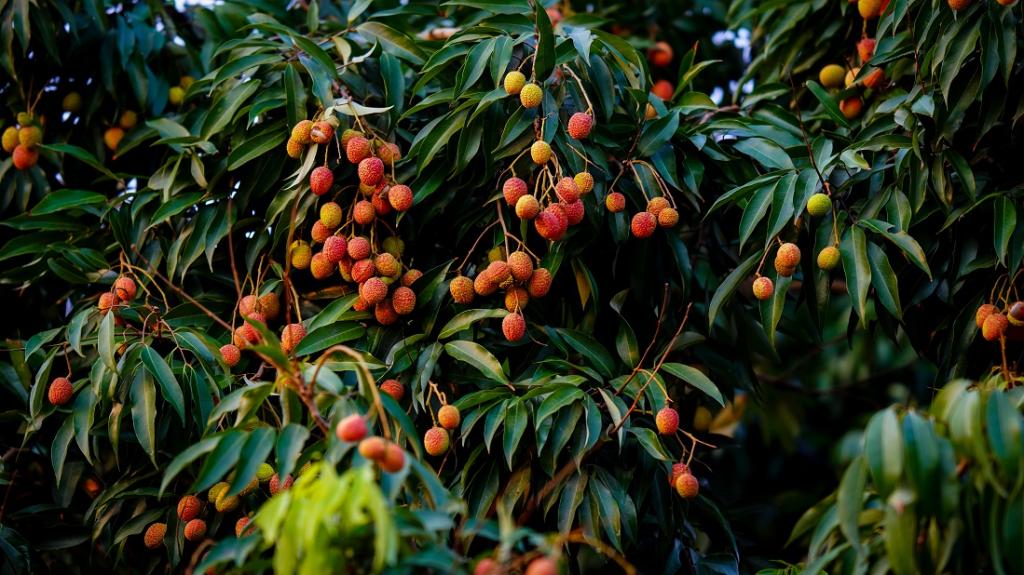
- 30 Dec 2023
Why is it in the News?
Litchi which is synonymous with India's hot summers, is now under cultivation in 19 Indian states, extending beyond its traditional confinement to Muzaffarpur in Bihar.
About Litchi Cultivation:
- Litchi, a delicious and succulent fruit of superior quality, belongs to the Sapindaceae family from a botanical perspective.
- Its translucent and flavorful aril, or edible flesh, is widely enjoyed as a table fruit in India.
- Agro-climatic Requirements: Litchi is a sub-tropical fruit that thrives optimally in moist sub-tropical climates.
- Ideally cultivated at low elevations, it can be grown up to an altitude of 800 meters.
- The crop flourishes in deep, well-drained loamy soil rich in organic matter, with an ideal pH range of 5.0 to 7.0.
- Temperature: The crop's temperature tolerance ranges from avoiding extremes, not exceeding 40.5 degrees Celsius in summer and staying above freezing point in winter.
- Rainfall: Prolonged rainfall, especially during flowering, can be detrimental as it interferes with pollination.
- Young trees necessitate protection from frost and hot winds until firmly established, although some temperature variation is necessary for proper fruiting.
- Frost during winter and intense summer heat are limiting factors for successful cultivation.
- Traditionally, commercial cultivation in India was confined to the northern foothills of the Himalayas from Tripura to Jammu & Kashmir, and the plains of Uttar Pradesh and Madhya Pradesh.
- However, due to increasing demand and the crop's viability, commercial cultivation has expanded to various states such as Bihar, Jharkhand, Madhya Pradesh, Chhattisgarh, etc.
- India ranks second in the world in production of Litchi production after China.
- Other significant producers include Thailand, Australia, South Africa, Madagascar, and the US.
- Statewise, Bihar tops in Litchi production followed by West Bengal (12 % of the total) and Jharkhand (10 %).
About National Research Centre on Litchi (NRCL):
- The National Research Centre on Litchi (NRCL) serves as the leading national institute dedicated to research and development in the field of litchi.
- It plays a pivotal role in providing national leadership, serving as a repository for comprehensive information on litchi production, processing, value addition, and extending consultancy services to end-users.
Article 356 of the Indian Constitution (The Hindu)
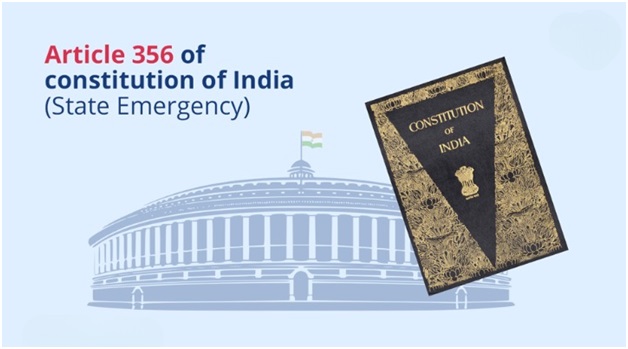
- 12 Dec 2023
Why is it in the News?
The Supreme Court recently held that the declaration of State emergency under Article 356 and the subsequent actions of the President should have a “reasonable nexus”.
What is Article 356 of the Indian Constitution?
Article 356 of the Constitution of India is based on Section 93 of the Government of India Act, 1935. According to Article 356, the President's Rule can be imposed on any state of India on the grounds of the failure of the constitutional machinery.
There are two types:
- If the President receives a report from the state's Governor or otherwise is convinced or satisfied that the state's situation is such that the state government cannot carry on the governance according to the provisions of the Constitution.
- Article 365: As per this Article, President's Rule can be imposed if any state fails to comply with all directions given by the Union on matters it is empowered to.
In simple words, President's Rule is when the state government is suspended and the central government directly administers the state through the office of the governor (centrally appointed. It is also called State Emergency or Constitutional Emergency.
President's Rule:
- Parliamentary approval is necessary for the imposition of the President's Rule on any state.
- The proclamation of President's Rule should be approved in both Houses of Parliament within two months of its issue.
- The approval is through a simple majority.
- The President's Rule is initially for a period of six months.
- Later, it can be extended for a period of three years with parliamentary approval, every six months.
- The 44th Amendment to the Constitution (1978) brought in some constraints on the imposition of the President's Rule beyond a period of one year. It says that the President's Rule cannot be extended beyond one year unless:
- There is a national emergency in India.
- The Election Commission of India certifies that it is necessary to continue the President's Rule in the state because of difficulties in conducting assembly elections in the state.
What happens after the President's Rule is imposed?
- The governor carries on with the administration of the state on behalf of the President. He or she takes the help of the state's Chief Secretary and other advisors/administrators whom he or she can appoint.
- The President has the power to declare that the state legislature's powers will be exercised by the Parliament.
- The state legislative assembly would be either suspended or dissolved by the President.
- When the Parliament is not in session, the President can promulgate ordinances with respect to the state's administration.
When is the President's Rule imposed?
- President's Rule is typically imposed when any of the following circumstances occur:
- The state legislature is unable to elect a leader as the Chief Minister within the time prescribed by the state's governor.
- Breakdown of a coalition in the state government, resulting in the Chief Minister having minority support in the legislature, and the CM is unable to prove a majority within the time prescribed by the governor.
- A vote of no confidence in the legislative assembly leads to a loss of majority.
- Postponement of elections due to unavoidable reasons such as a natural disaster, epidemic, or war.
Revocation of President's Rule:
- President's Rule can be revoked anytime after such a proclamation has been made by a subsequent proclamation by the President.
- A proclamation of revocation does not require approval by the Parliament.
- This occurs when the leader of a political party produces letters indicating majority support for him in the assembly and stakes his claim to form the state government.
Oil Producers Water Down Provision on Fossil Fuel Phase-out (Indian Express)
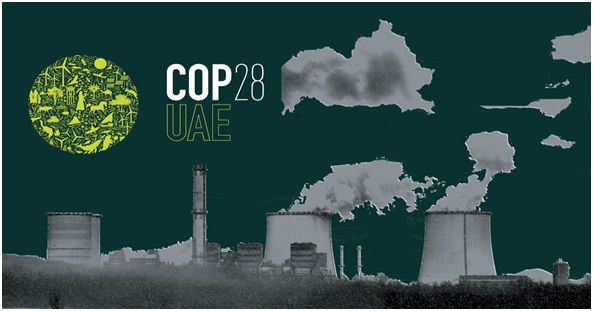
- 12 Dec 2023
Why is it in the News?
After four days of deadlock, a new draft agreement text emerged at the COP28 climate meeting that severely watered down earlier provisions on fossil fuel elimination but singled out coal for a rapid phase-down, which could be problematic for India.
Context:
- The 28th Conference of the Parties (COP 28) to the United Nations Framework Convention on Climate Change is underway in the United Arab Emirates from November 30 to December 12, 2023.
- During the climate meeting on December 10, negotiators took an initial step toward enhancing action on adapting to climate change.
- A draft text outlining potential "global goals" on adaptation was introduced for the first time, serving as a starting point for further negotiations.
- Negotiators are actively discussing various topics, including the contentious issue of fossil fuel phase-out, in informal sessions to find common ground.
- The draft document is titled 'Global Goal on Adaptation' (GGA) and aims to establish a shared global objective for adaptation, similar to the global goal of limiting temperature rise below the 1.5 degrees Celsius threshold for mitigation.
- This initiative addresses a longstanding demand from developing countries, emphasizing the need for increased focus and resource mobilisation for adaptation efforts.
- Notably, the draft removes the term 'phasing out' of fossil fuels but includes stronger language against coal, urging a "rapid phase-down of unabated coal," a point that may face objections from major consumers like India, Indonesia, and China, all developing countries heavily reliant on coal power.
Responses to the Draft Text 'Global Goal on Adaptation':
- The European Union (EU) and certain small island states promptly dismissed the draft agreement text.
- The EU climate commissioner criticized the overall insufficiency of the text, deeming it inadequate in addressing the climate change challenge.
- Primary dissatisfaction arose from the weakening of a provision related to the use of fossil fuels.
- The draft initially urged countries to "reduce both consumption and production of fossil fuels, in a just, orderly, and equitable manner."
- Notably, fossil fuels, responsible for nearly 80 percent of greenhouse gas emissions, have never been explicitly mentioned in prior COP decisions.
- While previous decisions emphasized the need to cut emissions, they avoided specifying actions for emission reduction.
- COP28 marked the first formal discussion of a fossil fuel phase-out but attempts to incorporate a robust provision faced resistance from oil-producing nations like Saudi Arabia and Russia.
- India, while not offering an immediate reaction to the draft agreement, has consistently asserted that singling out coal for accelerated reduction is discriminatory.
India's Ambitious Initiative to Expand Renewable Energy Capacity (Indian Express)
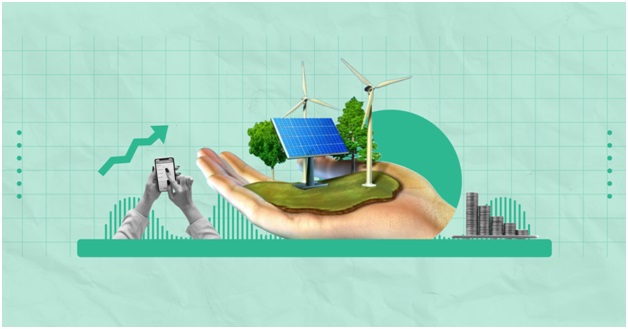
- 11 Dec 2023
Why is it in the News?
The Ministry of New and Renewable Energy (MNRE) has proposed an exemption for green hydrogen developers from adhering to its list of authorised manufacturers to enable them to import solar PV modules and wind turbine models from China.
What Does The Ministry of New and Renewable Energy (MNRE) Propose?
- The Ministry of New and Renewable Energy (MNRE) is exploring the option of granting an exemption to green hydrogen developers from its list of authorized manufacturers.
- This proposed exemption would enable these developers to import solar PV modules and wind turbine models from China, aiming to enhance the competitiveness of green hydrogen exports.
- It's noteworthy that Chinese manufacturers are presently absent from MNRE's Approved List of Models and Manufacturers (ALMM) and Revised List of Models and Manufacturers (RLLM).
The MNRE’s Proposal Background:
- After the 2020 Galwan Valley skirmishes, the Indian government issued directives to restrict the involvement of Chinese vendors in public procurement.
- Recently, the Indian procurement portal GeM announced the removal of hundreds of Chinese vendors over the past three years.
- At a time when energy companies are intensifying efforts to mass-produce green hydrogen, essential for which are renewable energy equipment and electrolysers, the government has sidelined Chinese manufacturers.
- This aligns with the MNRE's policy to enhance domestic manufacturing of renewable energy equipment.
- While central PSUs may face restrictions on importing electrolysis machinery from China, others continue to do so.
- In FY23, India witnessed a 40% increase, in importing machines and apparatus for electroplating, electrolysis, and electrophoresis, worth $45.61 million, compared to the preceding fiscal year.
What is the Significance of the MNRE’s Proposal?
- ??The proposal to import solar PV modules from China carries significance in bolstering the supply chain and enhancing the global competitiveness of Indian green hydrogen exports.
- Central PSUs such as Indian Oil Corporation Ltd and NTPC Ltd, both actively involved in green hydrogen projects, would benefit by sourcing equipment from Chinese manufacturers.
- This move is poised to strengthen India's position in the global green hydrogen market, aligning with the objectives outlined in the National Green Hydrogen Mission and facilitating the achievement of set targets.
Odisha Invokes ESMA to Ban Strikes by Health Department Staffs (The Hindu)
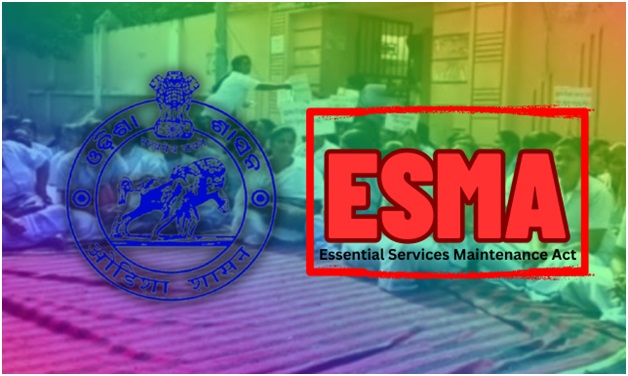
- 07 Dec 2023
Why is it in the News?
The Odisha Government invoked the Orissa Essential Services (Maintenance) Act (ESMA) prohibiting strikes by paramedical staff, including nurses, pharmacists, technicians, Class III and IV employees, to ensure that medical services are not disrupted.
About Essential Services Maintenance Act (ESMA):
The Indian Parliament enacted ESMA in 1968 to ensure the continuous provision of critical services crucial to people's daily lives. This legislation prohibits employees in essential services from striking, regardless of bandhs or curfews.
- Designated Essential Services: Public conservation, sanitation, water supply, hospitals, national defense, petroleum, coal, electricity, steel, fertilizer production, and banking-related services fall under the ambit of essential services.
- Communication, transportation, and government initiatives for food grain acquisition and distribution are also covered.
- State-Specific Application: State governments, individually or collaboratively, can enforce ESMA within their territories, each having its own version with slightly varied provisions.
- This allows states to address disruptions that impact specific regions.
- Central Government Activation: In the case of a nationwide disruption, especially in sectors like railways, the central government may invoke ESMA.
- Consequences for Striking Employees: Employees engaging in illegal strikes under ESMA can face disciplinary action, including dismissal. Legal consequences may involve arrests without a warrant, with imprisonment for up to one year, fines, or both for those participating or instigating the strike.
Panchayat Development Index (PIB)
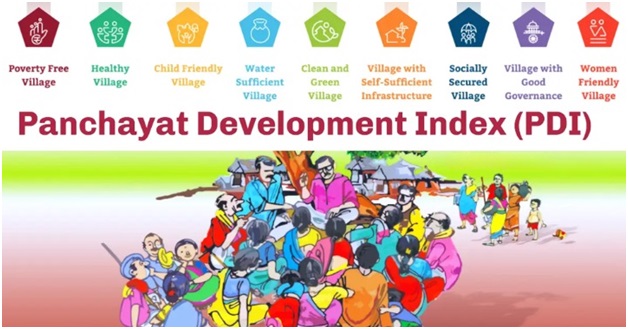
- 06 Dec 2023
Why is it in the News?
The Union Minister of State for Panchayati Raj recently informed Lok Sabha about the Panchayat Development Index.
About the Panchayat Development Index:
- The Panchayat Development Index serves as a comprehensive and versatile metric designed to actively evaluate the holistic advancement, efficacy, and ongoing progress of panchayats.
- This index actively considers a spectrum of socio-economic indicators and parameters, offering an actively nuanced understanding of the well-being and developmental status of local communities within the panchayat's jurisdiction.
- Objectives: The primary objective is to actively play a pivotal role in assessing performance and progress towards actively achieving Sustainable Development Goals at the grassroots level.
- An active component of this initiative is the Local Indicators Framework, which encompasses nine key themes for actively localising Sustainable Development Goals.
- These themes actively encompass creating poverty-free and thriving livelihoods, ensuring health and actively child-friendly environments, actively promoting water sufficiency, actively fostering clean and green spaces, actively developing self-sufficient infrastructure, actively establishing socially just and secure communities, actively promoting good governance, and actively creating women-friendly villages.
How Ranking Works?
- Ranks within the index are actively assigned based on scores, actively categorising panchayats into four grades.
- Those actively scoring below 40 percent are actively classified as Grade D,
- 40-60 percent as Grade C,
- 60-75 percent as Grade B
- 75-90 percent as Category A
- and those actively surpassing 90 percent are actively designated as A+.
- Significance of this Index: The significance of this index lies in its ability to actively offer valuable insights into areas requiring attention and improvement within rural areas under panchayat jurisdiction.
- It actively aids in identifying disparities, gauging the achievement of development goals, and actively crafting targeted policies and interventions to elevate the overall well-being and quality of life in rural communities.
Elephant Endotheliotropic Herpesvirus (EEHV) (DST Gov)
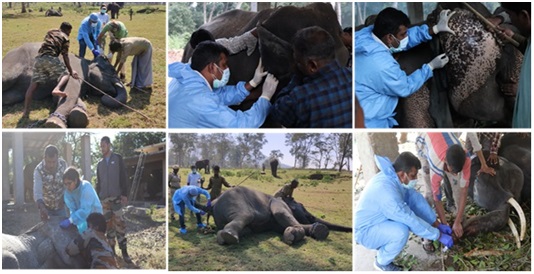
- 06 Dec 2023
Why is it in the News?
The study by ICAR-Indian Veterinary Research Institute (ICAR-IVRI), Izatnagar, Bareilly has found the exact status of EEHV and its subtypes circulating among the Asian elephant population in India.
What is Elephant Endotheliotropic Herpesvirus (EEHV)?
- Elephant endotheliotropic herpesvirus (EEHV) is responsible for one of the most devastating viral infectious diseases in elephants worldwide, especially young Asian elephants.
- EEHV is a double-stranded DNA virus that is classified in the family Herpesviridae.
- The mortality rate is very high (70-85%) and death occurs within a short period (2-4 days).
- In India, the incidence of EEHV-HD was first reported in 1997.
- 9 of 15 potential cases were confirmed from Southern India in wild free-ranging calves in Kerala, Karnataka, Tamil Nadu forest reserves, and Madras Zoo.
- Transmission of the disease: EEHV is mostly spread through mucosal secretions which include:
- Saliva, Breast milk, Nasal secretions, Trunk to trunk contacts etc
- The disease can only affect elephants and is not infectious to humans or other animals.
- Symptoms: Some elephants show symptoms such as reduced appetite, nasal discharge and swollen glands.
- Treatment: Treatment involves a combination of strategies such as antiviral therapy, aggressive fluid therapy to counter haemorrhaging, immuno-stimulant drugs like selenium and Vitamins C and E, as well as antipyretics and analgesics to manage fever.
- It's important to note that there is no definitive cure for herpesviruses in animals or humans since these viruses typically enter a latent state.
Scientists uncover seismic clues in Kopili Fault zone, advancing earthquake preparedness (PIB)
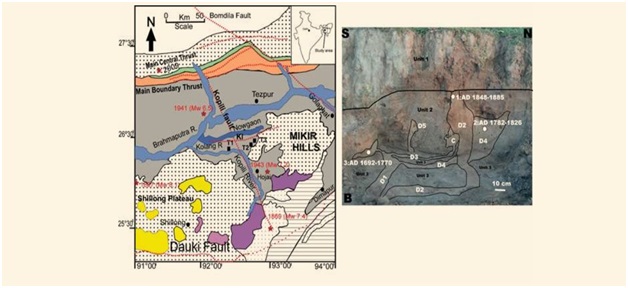
- 06 Dec 2023
Why is it in the News?
Recently, scientists at the Indian Institute of Geomagnetism (IIG) have detected seismogenic liquefaction characteristics within the dynamically active Kopili Fault (KF) zone.
About Kopili Fault Zone:
- The Kopili Fault extends from the western part of Manipur up to the tri-junction of Bhutan, Arunachal Pradesh and Assam.
- It covers a distance of about 400 km and is closer to the Himalayan Frontal Thrust.
- The Kopili fault bisects the Meghalaya Plateau and isolates the Mishmi block from the main part of the plateau.
- The Kopili fault is almost passing through the Kopili River.
- The river Kopili rises in the North Cachar Hills District in Borail Range at an altitude of 1525 meters.
- From a field study, it is observed that the Kopili Fault region is moving in the northeast direction at an average velocity of 28.397N mm/yr and 40.227E mm/yr.
- This region is characterized by heightened seismic activity, classified within the most critical Seismic Hazard Zone V.
- The geological dynamics are attributed to collisional tectonics, where the Indian Plate subducts beneath the Eurasian Plate.
- The fault itself is a transpressional fracture, producing dextral strike-slip earthquakes in the lower crust.
- The Kopili fault zone, a tectonic depression filled by the alluvium of the Kopili River and its tributaries, has experienced numerous seismic events, notable among them being the 1869 earthquake (magnitude 7.8) and the 1943 earthquake (magnitude 7.3).
Clearing Corporation of India Limited (CCIL) (The Hindu)
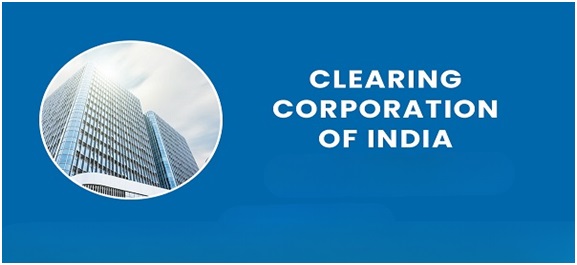
- 02 Dec 2023
Why is it in the News?
The Reserve Bank of India (RBI) and the Bank of England (BoE) on Friday signed a Memorandum of Understanding (MoU) concerning cooperation and exchange of information in relation to the Clearing Corporation of India Ltd (CCIL).
About Clearing Corporation of India Limited (CCIL):
- The Clearing Corporation of India Ltd. (CCIL) was set up in April 2001 to provide guaranteed clearing and settlement functions for transactions in Money, G-Secs, Foreign Exchange, and Derivative markets.
- Objective: The prime objective has been to improve efficiency in the transaction settlement process, insulate the financial system from shocks emanating from operations-related issues, and undertake other related activities that would help to broaden and deepen the money, debt, and forex markets in the country.
- Promoters of CCIL: State Bank of India, IDBI Bank Ltd, ICICI Bank Ltd, Life Insurance Corporation of India (LIC), Bank of Baroda, and HDFC Bank Ltd.
- The company was incorporated with an authorised equity share capital of Rs. 50 crores.
- CCIL’s adherence to the stringent principles governing its operations as a Financial Market Infrastructure (FMI) has resulted in its recognition as a Qualified Central Counterparty (QCCP) by the Reserve Bank of India in 2014.
- CCIL is also the trade repository for all OTC transactions in the Forex, Interest Rate, and Credit derivative transactions.
- Through its fully owned subsidiary, Clearcorp Dealing Systems Limited (CDSL), CCIL has introduced various platforms for the electronic execution of deals in various market segments.
- Further, CDSL has developed, implemented, and manages the NDS-OM, the RBI-owned anonymous electronic trading system for dealing in G-Secs and also for reporting OTC deals, as well as the NDS-CALL platform, which facilitates electronic dealing in the Call, Notice & Term Money market.
Codex Alimentarius Commission (CAC) (PIB)
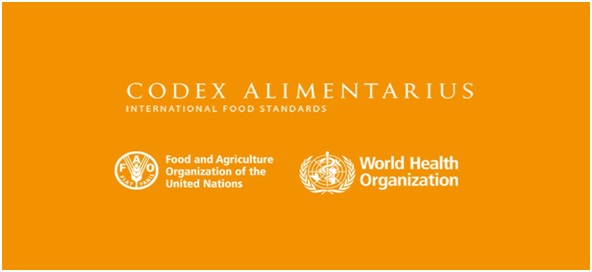
- 02 Dec 2023
Why is it in the News?
The Codex Alimentarious Commission (CAC) has recently praised India’s Standards on Millets and accepted its proposal for the development of global standards for millets during its 46th session held in Rome, Italy.
About Codex Alimentarius Commission (CAC):
- The Codex Alimentarious Commission (CAC) is an international food safety and quality standard-setting body created by WHO and FAO of the United Nations with 188 member countries.
- It is the body responsible for all matters regarding the implementation of the Joint FAO/WHO Food Standards Programme.
- Membership of the Commission is open to all Member Nations and Associate Members of FAO and WHO which are interested in international food standards.
- The Commission meets in regular session once a year alternating between Geneva and Rome.
- The programme of work of the Commission is funded through the regular budgets of WHO and FAO with all work subject to approval of the two governing bodies of the parent organizations.
- The Commission works in the six UN official languages.
- India has been a member of this commission since 1964.
- The 46th session of the Codex Alimentarius Commission (CAC) was held from 27 November to 2 December (2023) in Rome, Italy.
- In the current session, India has framed a comprehensive group standard for 15 types of millets specifying 8 quality parameters, which received resounding applause at the international meet.
- India put forward a proposal for the development of global standards for millet, particularly for Finger millet, Barnyard millet, Kodo millet, Proso millet, and Little millet as group standards as in the case of pulses.
Sindhudurg Fort (Financial Express)
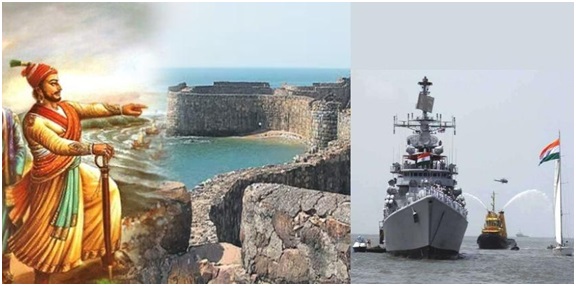
- 01 Dec 2023
Why is it in the News?
The Indian Navy is gearing up to showcase its operational prowess in a significant ‘Operational Demonstration’ scheduled for December 4, 2023, at Sindhudurg Fort in Maharashtra.
About Sindhudurg Fort:
- Sindhudurg Fort is a historically significant stronghold situated on an islet in the Arabian Sea, just off the coast of Maharashtra in western India.
- Positioned on Kurte Island near Malvan town in Sindhudurg District within the Konkan region of Maharashtra, this formidable fortress was commissioned and constructed under the reign of Chhatrapati Shivaji Maharaj of the Maratha Empire in 1664.
- The primary objective behind its construction was to counteract the escalating influence of foreign colonizers, including English, Dutch, French, and Portuguese merchants, and to curb the rise of the Siddis of Janjira.
- The Bakhar (a form of historical narrative written in Marathi prose) written by Chitragupta aptly mentions this fort as the most invaluable asset to Shivaji Maharaj.
Key Features:
- The fort spans 48 acres and boasts fortified walls that are 29 feet high and 12 feet thick, extending for a distance of two miles.
- Guarding these walls are 52 bastions equipped with embrasures for cannons.
- Access to the fort is through the Dilli Darwaja, the main gate, uniquely designed to blend seamlessly with the walls and visible only from close quarters.
- The fort is surrounded by several smaller forts, including Padmagad, Rajkot, and Sarjekot.
- An intriguing feature within the fort is a slab bearing the handprint and footprint of Chhatrapati Shivaji Maharaj.
- Additionally, a small temple dedicated to the Maratha King is situated within the fort's bounds
Kati Bihu (PIB)
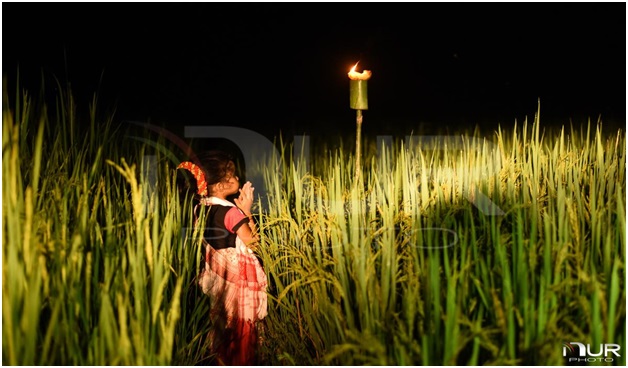
- 19 Oct 2023
Why in the News?
The Prime Minister, Narendra Modi recently extended best wishes on the auspicious occasion of KatiBihu to the people of Assam.
About Kati Bihu:
- Kati Bihu is an annual celebration observed in the state of Assam, signifying the relocation of rice saplings.
- The term "Kati" translates to cutting, representing the agricultural activity during this period.
- Also known as Kongali Bihu, with "Kongali" connoting a state of poverty, the festival holds cultural significance in Assam alongside two other Bihu festivals—Bhogali or Magh Bihu in January and Rongali or Bohag Bihu in April.
Significance:
- In this month, food resources are scarce, prompting people to celebrate by illuminating their homes with earthen lamps or candles.
- Lighting lamps near the Tulsi plant are a central aspect of the festival, signifying devotion and auspiciousness.
- People light a special lamp known as "Akash Banti" (Sky candle) in their paddy fields. Fueled by mustard oil, these lamps are elevated on bamboo poles.
- The belief prevails that the illuminated lamps guide the spirits of ancestors toward their heavenly abode.
AERA Warns Indian Airport Operators Against Charging Unapproved Tariffs (TOI)
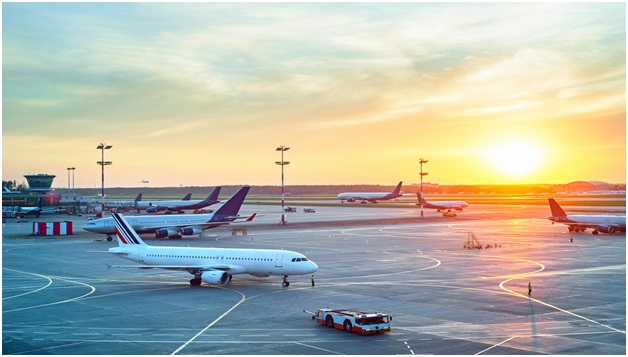
- 13 Oct 2023
Why in the News?
The Airport Economic Regulatory Authority (AERA) issued a warning to major airports about levying aeronautical charges without approval.
About Airports Economic Regulatory Authority (AERA):
- Airports Economic Regulatory Authority (AERA), established under the Airports Economic Regulatory Authority of India Act, 2008, is a statutory body entrusted with the crucial task of regulating tariffs and associated charges for aeronautical services at major airports.
- This includes overseeing air traffic management, aircraft landing and parking, and ground handling services.
- The designation of an airport as "major" hinges on the 2008 Act, considering an annual passenger traffic threshold of at least 15 lakh.
- An amendment in 2019 elevated this criterion to 35 lakh annual passengers.
- For other airports, tariff determination falls under the purview of the Airports Authority of India (AAI).
- As an independent economic regulator, AERA operates with the objective of creating an equitable playing field, fostering healthy competition among major airports, promoting investment in airport facilities, and ensuring transparent regulation of aeronautical service tariffs.
- This initiative arose from the recognition of the need for an independent regulatory body capable of safeguarding the interests of both service providers and consumers.
- Headquartered in Delhi, AERA's history traces back to a time when most Indian airports were under the governance of the central government.
- The shift towards private sector participation in airport infrastructure development prompted the need for a distinct regulator.
- The Naresh Chandra Committee set up in 1997, recommended the establishment of an independent regulatory authority.
- Subsequently, the Airports Economic Regulatory Authority of India Act, 2008 (AERA Act), was enacted, leading to the creation of AERA.
About Airports Authority of India (AAI):
- Airports Authority of India (AAI), established through an Act of Parliament on April 1, 1995, resulted from the merger of the National Airports Authority and the International Airports Authority of India.
- Entrusted with a significant role, AAI is responsible for creating, upgrading, maintaining, and managing civil aviation infrastructure both on the ground and in the airspace of the country.
- Main Functions of AAI Include
- Construction, modification, and management of passenger terminals.
- Development and management of cargo terminals.
- Development and maintenance of apron infrastructure, encompassing runways, parallel taxiways, aprons, etc.
- Provision of Communication, Navigation, and Surveillance, involving DVOR / DME, ILS, ATC radars, visual aids, etc.
- Provision of air traffic services.
- Provision of passenger facilities and related amenities at its terminals.
Data Analytics Dashboard” and “Poorvottar Sampark Setu” Portal Launched (PIB)
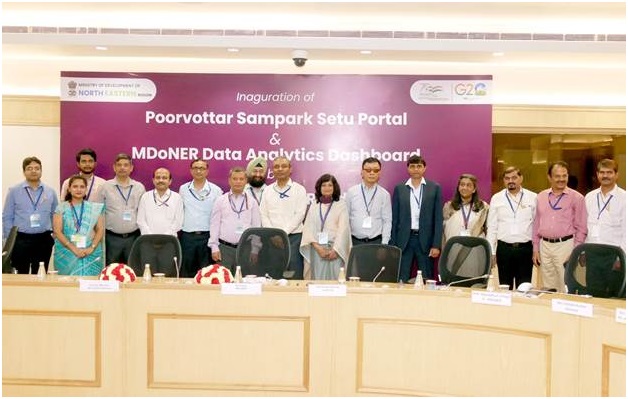
- 13 Oct 2023
Why in the News?
The Union Ministry of Development of the North-East Region virtually launched the “MDoNER Data Analytics Dashboard” and “Poorvottar Sampark Setu” portal at Vigyan Bhawan, New Delhi recently.
About Poorvottar Sampark Setu Portal:
- The Poorvottar Sampark Setu portal is a robust tool designed to streamline and improve the monitoring of Union Ministers' fortnightly visits to the North Eastern Region (NER)
Key features include:
- Insightful Dashboard: The portal offers a comprehensive dashboard presenting valuable insights and graphical information on state-wise/district-wise visits to NER by Union Ministers, serving as a centralized resource for stakeholders.
- Curated Minister List: It generates a curated list of Ministers eligible for nomination for visits to NER in the upcoming months, facilitating efficient planning.
- Online Tour Reporting: After their visit, Ministers can conveniently submit tour reports and recommendations online, streamlining the reporting process.
- Recommendation Analysis: MDoNER (Ministry of Development of North Eastern Region) can analyze and forward the received recommendations to respective line Ministries, Departments, and State Governments for prompt action.
- Summary Report Generation: The portal offers a one-click summary report generation feature, simplifying the overview of visits for effective decision-making.
What is the MDoNER Data Analytics Dashboard?
- The MDoNER Data Analytics Dashboard is a comprehensive platform integrating data from 112 schemes across 55 Departments and Ministries.
Its key benefits include:
- Data-Driven Decision Making: Empowers stakeholders with data-driven insights for informed decision-making.
- Operational Efficiency: Streamlines operations, ensuring a seamless and efficient workflow.
- Centralized Monitoring: Provides a centralized hub for monitoring diverse schemes and initiatives.
- Policy-Level Decision Tool: Functions as a valuable tool for crafting policies based on robust data analysis.
- Information Integration: Integrates information seamlessly, fostering coherence and accessibility.
- Focused Monitoring: Keeps a vigilant eye on NER Aspirational districts, North East border districts, and the most backward districts in NER for targeted interventions.
Modi’s Visit to Gunji Irks Nepal Opposition (Indian Express)
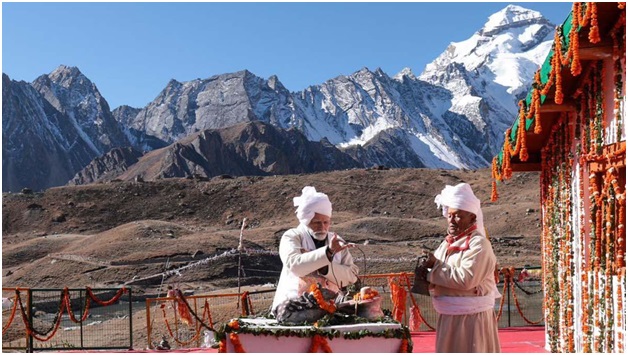
- 13 Oct 2023
Why is it in the News?
Prime Minister Narendra Modi’s visit to Gunji near Kalapani, Uttarakhand has triggered an uproar in Nepal.
About Gunji Village:
- Gunji Village, situated in the Dharchula tehsil of Pithoragarh district in northern Uttarakhand, holds a strategic location near the borders of Tibet and Nepal.
- Nestled at an altitude of 3500 meters, it marks the confluence of the Kuthi Yankti and Kalapani Rivers at the eastern end of the Kuthi Valley, offering stunning views of Mount Api in Nepal.
- Covering a geographical area of 188.9 hectares, Gunji is a seasonal abode for its inhabitants.
- During winters, the residents, totalling 335 people in 194 households as per the 2011 census, migrate to lower altitudes, primarily to Dharchula within the same district.
- The village is under the administration of a Sarpanch, the elected head.
- Renowned for its connection to the traditional Indian/Nepalese route to Kailas–Manasarovar, Gunji attracts visitors seeking its breathtaking vistas.
- To embark on a journey to Gunji, obtaining an Inner Line permit is a prerequisite.
What is an Inner line permit (ILP)?
- An Inner Line Permit (ILP) is an official travel document issued by the Government of India, facilitating the inward travel of Indian citizens into a protected area for a limited duration.
- It is mandatory for Indian citizens residing outside these specific states to secure a permit before entering the designated state.
- This document serves as a regulatory measure by the government to manage and monitor the movement of individuals into areas located in proximity to India's international borders.
- The concept originates from the Bengal Eastern Frontier Regulations of 1873, designed to safeguard the Crown's interests in trades such as tea, oil, and elephants by restricting the entry of "British subjects" into these designated "Protected Areas.
- In 1950, the term "British subjects" was replaced by "Citizen of India."
- ILPs come in various types, including those for tourists and others intended for individuals planning extended stays, often for employment purposes.
Diphtheria Outbreak in Guinea (WHO)
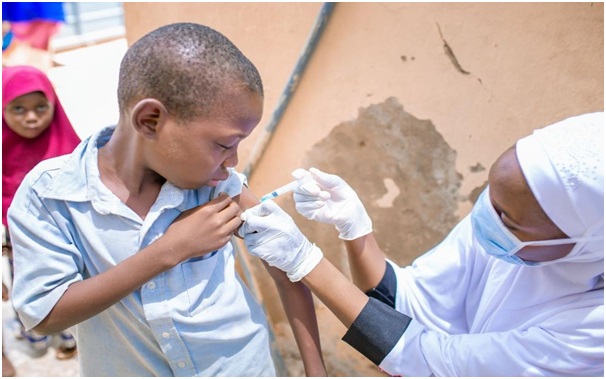
- 18 Oct 2023
Why in the News?
The World Health Organization (WHO) has announced that Guinea's Health Ministry has officially notified them of a diphtheria outbreak.
What is Diphtheria?
- Diphtheria, an extremely contagious and infectious disease, instigates severe inflammation in the nose, throat, and trachea (windpipe).
- This ailment is caused by strains of bacteria known as Corynebacterium diphtheriae, which produce a potent toxin responsible for the onset of illness.
Causes:
- The bacterial infection spreads through various means, including respiratory droplets emitted during coughing or sneezing.
- Transmission can also occur through contact with infected open sores or ulcers. The bacteria's toxin is the primary culprit behind the illness.
Symptoms:
- Manifesting 2-5 days post-infection, symptoms of diphtheria encompass a thick, grey membrane covering the throat and tonsils, a sore throat, hoarseness, swollen glands in the neck, difficulty breathing, nasal discharge, fever, chills, and fatigue.
- If the toxin enters the bloodstream, it can lead to damage to the heart, nerves, and kidneys.
Infection and Spread:
- Diphtheria bacteria thrive on person-to-person transmission, emphasizing respiratory droplets as a common mode of contagion.
- Skin infections are possible but seldom result in severe disease.
Treatment:
- Combatting diphtheria involves a dual-pronged approach:
- Antitoxin (Anti-diphtheritic Serum): This neutralizes bacterial toxins and is specifically employed for respiratory system infections. The antitoxin acts on toxins that haven't bound with cells and tissues.
- Antibiotics (Erythromycin or Penicillin): These medications eradicate the bacteria, preventing further spread. Antibiotics are effective against both the respiratory system and skin infections caused by diphtheria.
Mines Ministry unveils draft rules for offshore minerals auction (The Hindu Business Line)
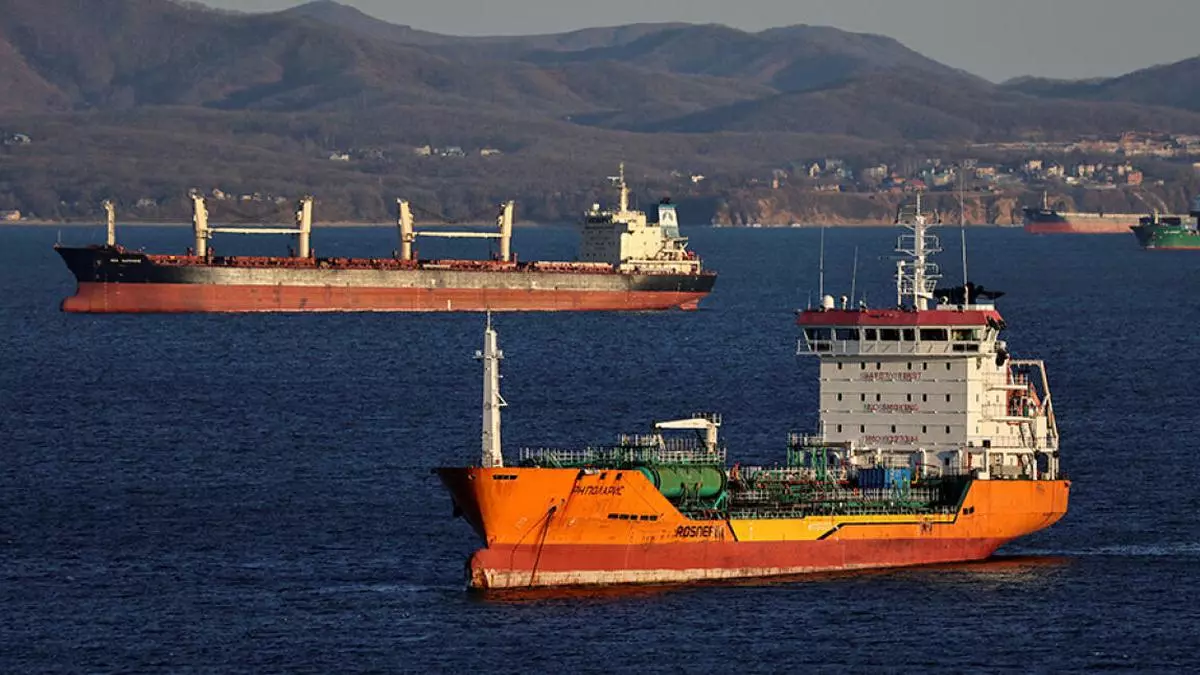
- 29 Dec 2023
Why is it in the News?
India’s Mines Ministry has proposed a new set of rules for the auction of offshore mineral blocks. It is also in the process of identifying such mineral blocks, including those in exclusive economic zones beyond territorial waters.
Context:
- To implement the amended Offshore Areas Mineral (Development & Regulation) Act, 2002 (OAMDR Act), the ministry has unveiled two draft rules:
- Offshore Areas Mineral Auction Rules: These rules delineate provisions governing the auctioning of production leases.
- Offshore Areas Existence of Mineral Resources Rules: These rules set forth norms for the exploration of minerals and deposits in offshore areas.
Offshore Areas Mineral (Development & Regulation) Act, 2002 (OAMDR Act):
- The OAMDR Act governs the development and regulation of mineral resources in India's territorial waters, continental shelf, exclusive economic zones, and other maritime zones.
About Offshore Areas Minerals (Development and Regulation) Amendment Bill, 2023:
- The Bill proposes amendments to the Offshore Areas Mineral (Development and Regulation) Act, 2002, governing mining activities in India's maritime zones.
Key highlights include:
- Empowering the government to reserve offshore areas without operating rights.
- Granting the administering authority the discretion to issue composite licenses or production leases to the government or a government company.
- Eliminating the provision for renewing production leases and setting a fixed fifty-year period, aligning with the Mines and Minerals (Development and Regulation) Act, 1957.
- Mandating the grant of production leases to the private sector through competitive bidding.
- Allowing non-competitive bidding for operating rights in mineral-bearing areas reserved by the central government for government entities or corporations.
- Restricting the grant of exploration licenses or production leases for atomic minerals to government or government corporations.
- Introducing a four-year timeline for the commencement of production and dispatch after executing a composite license or production lease, with a two-year timeline (extendable by one year) for re-commencement after discontinuation.
- Authorizing the central government to establish rules for mineral conservation, systematic development, and environmental protection in offshore areas, preventing or controlling pollution from exploration or production operations.
India's Maritime Zone Mineral Resources:
- India's maritime zone hosts diverse mineral resources, including lime mud off the Gujarat and Maharashtra coasts within the Exclusive Economic Zone (EEZ).
- Additionally, the region boasts construction-grade sand along the Kerala coast and heavy mineral placers in the inner-shelf and mid-shelf regions off Odisha, Andhra Pradesh, Kerala, Tamil Nadu, and Maharashtra.
- Phosphorite is found in the Eastern and Western continental margins, while the Andaman Sea and Lakshadweep Sea house Polymetallic Ferromanganese (Fe-Mn) nodules and crusts.
Forest Department Relies on Muthuvan Tribe's Indigenous Knowledge for Nilgiri Tahr Conservation (The Hindu)
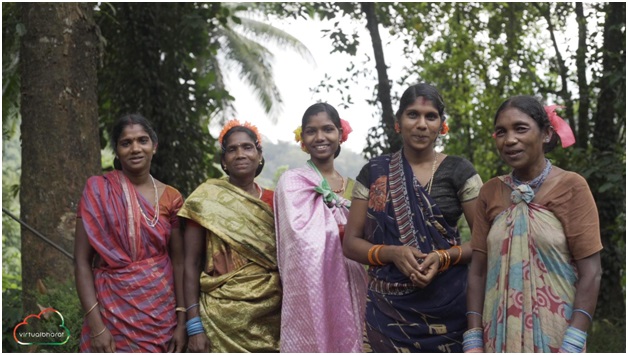
- 17 Oct 2023
Why in the News?
Members of the Muthuvan tribe of the Anamalai hills, who are known for coexisting with the wildlife with their traditional knowledge, have joined hands with the Tamil Nadu Forest Department for a unique task.
About the Muthuvan Tribe:
- Inhabiting the border hill forests of Kerala and Tamil Nadu, the Muthuvan tribe is distributed across this region.
- The tribe communicates in distinct dialects, identifying themselves as Malayalam Muthuvan and Pandi Muthuvan.
- Cultural Beliefs: Embracing animism and spirit worship, the Muthuvan tribe venerates forest gods and attributes the spirits of their ancestors as the initial settlers in the hill forests.
- Renowned for their harmonious coexistence with wildlife, the Muthuvan people leverage traditional knowledge to navigate their relationship with the natural environment.
- Unique Governance System - 'Kani System': Operating under the 'Kani System,' each village is overseen by a 'Kani' responsible for village administration, reflecting their distinctive form of governance.
- Traditional Medicine Expertise: Proficient in traditional medicines, the Muthuvan tribe safeguards their effective remedies, preserving and passing down this knowledge across generations.
- Occupation: Agriculture serves as the primary occupation for Muthuvan tribes, yielding various products such as ragi, cardamom, and lemongrass.
About Project Tahr:
- Project Tahr aims to enhance comprehension of the Nilgiri Tahr population through surveys and radio telemetry studies.
- The initiative focuses on reintroducing Tahrs to their historical habitat, fostering their return to natural landscapes.
- Addressing immediate threats, the project employs strategic measures to mitigate challenges facing the Nilgiri Tahr.
- A key component involves intensifying public awareness efforts to garner support and understanding for the conservation of this species.
- Project Tahr is slated for a comprehensive 5-year implementation, spanning from 2022 to 2027.
INS Sumedha Visits Nigeria as part of its deployment to the Gulf of Guinea (PIB)
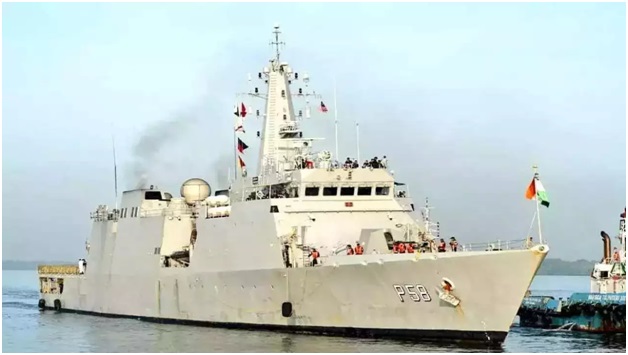
- 17 Oct 2023
Why in the News?
Indian Naval Ship INS Sumedha recently made a port visit at Lagos, Nigeria as part of its deployment to the Gulf of Guinea (GoG).
About INS Sumedha:
- INS Sumedha is the third vessel among the indigenously crafted Saryu-class Naval Offshore Patrol Vessels (NOPV).
- Constructed and designed domestically, Goa Shipyard Limited played a pivotal role in the indigenous creation of INS Sumedha.
- The vessel officially joined the Indian Navy's fleet on March 7, 2014.
- Operational Base: A key asset of the Indian Navy's Eastern Fleet, INS Sumedha operates from its base in Visakhapatnam.
- Primary Functions: The vessel is tasked with a diverse range of functions, including EEZ surveillance, anti-piracy patrols, fleet support operations, maritime security provision to offshore assets, and execution of escort operations for high-value assets.
- Features:
- With a displacement of 2,230 tonnes, INS Sumedha boasts dimensions of 105 meters in length and 12.9 meters in beam.
- Equipped with a cutting-edge weapon and sensor package, the vessel ensures enhanced operational capabilities.
- Designed to carry an Advanced Light Combat Helicopter onboard, adding to its versatility in maritime operations.
- Powered by two of the largest diesel engines deployed in the Indian Navy, INS Sumedha attains a top speed of 25 knots.
- Featuring a remarkable range of 6,000 nautical miles (11,000 km) at 16 knots (30 km/h), the offshore patrol vessel is well-suited for prolonged missions and operations.
About the Gulf of Guinea:
- Location: Situated as the northeasternmost part of the tropical Atlantic Ocean, the Gulf of Guinea is positioned off the western coast of the African continent.
- The Gulf lies at the confluence of the Prime Meridian and the Equator, specifically at 0°0’N and 0°0'E.
- Extent and Coastline: Encompassing an area of 2.3 million square kilometres, the Gulf features an extensive coastline stretching approximately 6,000 kilometres.
- Characterized by a narrow continental shelf, it boasts a distinctive coastal landscape.
- Oceanic Conditions: The Gulf of Guinea experiences warm tropical waters characterized by relatively low salinity, influenced by the inflow of rivers and high regional rainfall.
- Notable tributaries include the Volta and Niger rivers.
- Coastal Countries: 16 countries border the Gulf of Guinea, including Angola, Benin, Cameroon, Cote d'Ivoire, Democratic Republic of Congo, Republic of Congo, Guinea, Equatorial Guinea, Guinea-Bissau, Gabon, Nigeria, Ghana, São Tomé and Principe, Togo, and Sierra Leone.
- Topography: The coastal region is predominantly low-lying, featuring mangrove swamps, marshes, and lagoons.
- Geological Significance: The Gulf's coastline bears a striking resemblance to the continental margin of South America, affirming the theory of continental drift.
- Holding over 35% of the world’s petroleum reserves, the Gulf of Guinea is a significant global repository of petroleum.
- Security Challenges: Regrettably, the Gulf of Guinea has gained notoriety as one of the world’s most perilous gulfs due to widespread piracy, significantly impacting West African countries and attracting international concern.
BCCC Cautions Entertainment Channels on Depicting SCs, STs. (Business Standard)
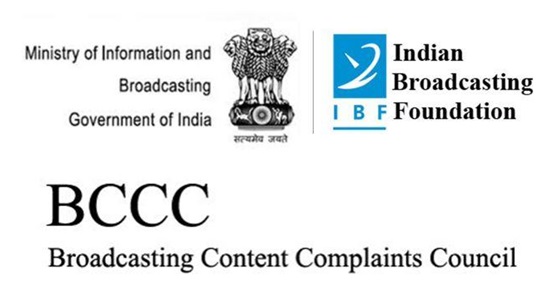
- 17 Oct 2023
Why in the News?
The Broadcasting Content Complaint Council (BCCC) on Tuesday asked entertainment channels to exercise "extreme caution" while portraying the scheduled castes and scheduled tribes in television programmes to avoid hurting the sentiments of the members of the two communities.
About the Broadcasting Content Complaints Council (BCCC):
- The Indian Broadcasting and Digital Foundation (IBDF) established the BCCC in June 2011 as an independent self-regulatory body.
- Regulatory Role: The primary function of the BCCC is to enforce self-regulatory guidelines for non-news channels, covering general entertainment, kids, and special interest channels.
- Formulation of Guidelines: Guidelines address crucial areas, including national interest, racial and religious harmony, treatment of children, social values, explicit content (sex and nudity), violence, crime, gambling, drugs, smoking, tobacco, alcohol, defamation, harm, and offence.
- Complaint Lodging Process: Any viewer can file a complaint regarding television programs, non-news channels, and digital content of IBDF India members.
- Composition of BCCC:
- The council comprises 13 members, including a chairperson, four non-broadcast members, four representatives from national-level statutory commissions, and four members from the broadcast industry.
- Functioning Mechanism: Upon receiving a valid complaint, the concerned channel is required to present its viewpoint on the contested content within one working week.
- If the BCCC committee finds the channel's response unsatisfactory, it holds the authority to issue directives, mandating modifications or withdrawal of the content.
- Reporting to Authorities: In case of non-compliance with directives, the BCCC promptly submits a detailed report to the Ministry of Information and Broadcasting within 24 hours.
Key Details about the Indian Broadcasting & Digital Foundation (IBDF):
- Founded in 1999, the Indian Broadcasting Foundation initially served as the apex body for broadcasters.
- Recently rebranded as the Indian Broadcasting and Digital Foundation (IBDF) to encompass digital platforms, consolidating oversight over all digital over-the-top streaming firms.
- Representative Role: Recognized as the official spokesperson for the Indian broadcasting industry, IBDF plays a crucial role in articulating industry perspectives.
- IBDF's membership includes a diverse range of channels, covering both news and non-news categories such as General Entertainment Channels (GEC), sports, music, movies, and infotainment.
- Actively involved in providing research-based legislative inputs to the government, IBDF engages in advocacy efforts on various fronts, including fiscal, regulatory, and business issues.
- The organization plays a pivotal role in facilitating the formulation of favourable policies, addressing industry challenges, and advocating for essential changes in the overall system.
INS Beas to Be Upgraded (PIB)
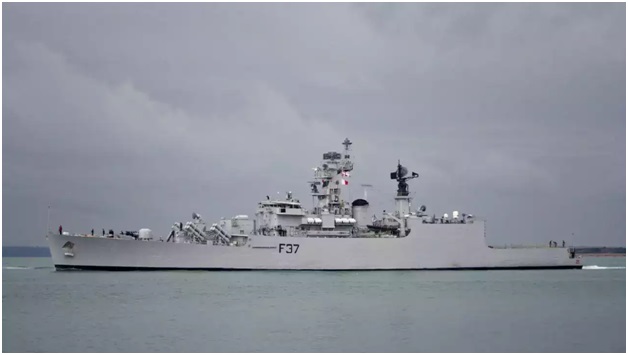
- 16 Oct 2023
Why in the News?
The Ministry of Defence signed a contract on October 16, 2023, in New Delhi for the life Upgrade and Re-Powering of "INS Beas" with Kochi-based M/S Cochin Shipyard Limited (CSL) at an overall cost of Rs. 313.42 Cr.
Context:
- The INS Beas is gaining attention as the first Brahmaputra Class Frigate to undergo a transition from steam to diesel propulsion.
- The completion of its Mid-Life Upgrade and Re-Powering in 2026 is expected to result in the INS Beas joining the active fleet of the Indian Navy, equipped with a modernized weapon suite and upgraded combat capabilities.
About INS Beas:
- INS Beas (F37) stands as a Brahmaputra-class frigate within the Indian Navy, constructed at the Garden Reach Shipbuilders and Engineers (GRSE) in Kolkata.
- Commissioned on July 11, 2005, it is the second ship in the Indian Navy to carry this name, with the first being a Leopard-class frigate commissioned in 1960 and decommissioned in 1992.
- Role: Functioning as a versatile warship, INS Beas is proficient in various missions, encompassing anti-aircraft, anti-submarine, and anti-ship warfare.
- Additionally, it plays a crucial role in patrolling, surveillance, and safeguarding India's maritime interests.
- Features: The ship's design and construction are wholly Indian, derived from the modification of the Godavari-class frigate.
- With a displacement of about 3,850 tonnes, INS Beas boasts a length of 126 meters (413 feet) and a beam width of 14.5 meters (48 feet).
- Propulsion: Powered by 2 steam turbines, INS Beas demonstrates remarkable agility, capable of reaching speeds exceeding 30 knots during naval operations.
- Technology: Equipped with modern sensor suites and matching weapon systems, the ship embodies cutting-edge technology to enhance its operational capabilities.
Centre Notifies Green Credit Programme and Ecomark Scheme (DownToEarth)
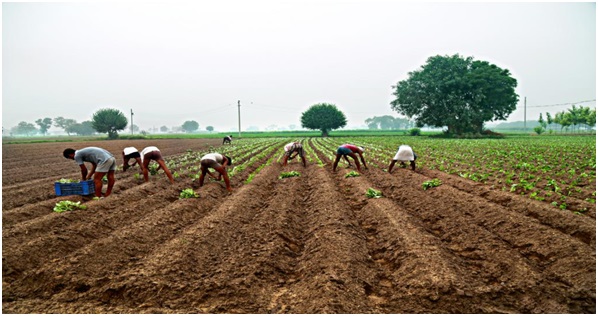
- 14 Oct 2023
Why in the News?
The Union Ministry of Environment, Forests and Climate Change on October 13, 2023, notified the ‘green credit’ programme, a first-of-a-kind market-based instrument designed to incentivise individuals, industries and local bodies for their voluntary environmental actions across diverse sectors.
About Green Credit Programme (GCP):
- Green Credit Program (GCP ) is an innovative market-based mechanism designed to incentivize voluntary environmental actions across diverse sectors, by various stakeholders like individuals, communities, private sector industries, and companies.
- The GCP's governance framework is supported by an inter-ministerial Steering Committee and The Indian Council of Forestry Research and Education (ICFRE) serves as the GCP Administrator, responsible for program implementation, management, monitoring, and operation.
- In its initial phase, the GCP focuses on two key activities: water conservation and afforestation.
- A user-friendly digital platform will streamline the processes for registration of projects, verification, and issuance of Green Credits.
- The Green Credit Registry and trading platform, being developed by ICFRE along with experts, would facilitate the registration and thereafter, the buying and selling of Green Credits.
- To obtain Green Credits, individuals and entities must register their activities through the central government's dedicated app/website www.moefcc-gcp.in.
- The Administrator will verify the activity through a designated agency, with self-verification for small projects.
- Once verification is complete, the Administrator will grant a Green Credit certificate which will be tradable on the Green Credit platform.
What is the Ecomark Scheme?
- The Ecomark Scheme provides accreditation and labelling for household and consumer products that meet specific environmental criteria while maintaining quality standards as per Indian norms.
- Products accredited under the Ecomark Scheme will adhere to specific environmental criteria, ensuring minimal environmental impact.
- It will build consumer awareness of environmental issues and encourage eco-conscious choices.
- It will also motivate manufacturers to shift towards environmentally friendly production. The scheme seeks to ensure accurate labelling and prevent misleading information about products.
- The Central Pollution Control Board administers the Ecomark Scheme in partnership with the Bureau of Indian Standards (BIS), which is the national body for standards and certification.
Both initiatives mark significant steps in promoting sustainable living, and environmental conservation, and, through individual and collective choice, embody eco-friendly practices in India. They align with global sustainability goals and reflect the government's commitment to conservation and protection of the environment.
Atomic watchdog report says Iran is increasing production of highly enriched uranium (Indian Express)
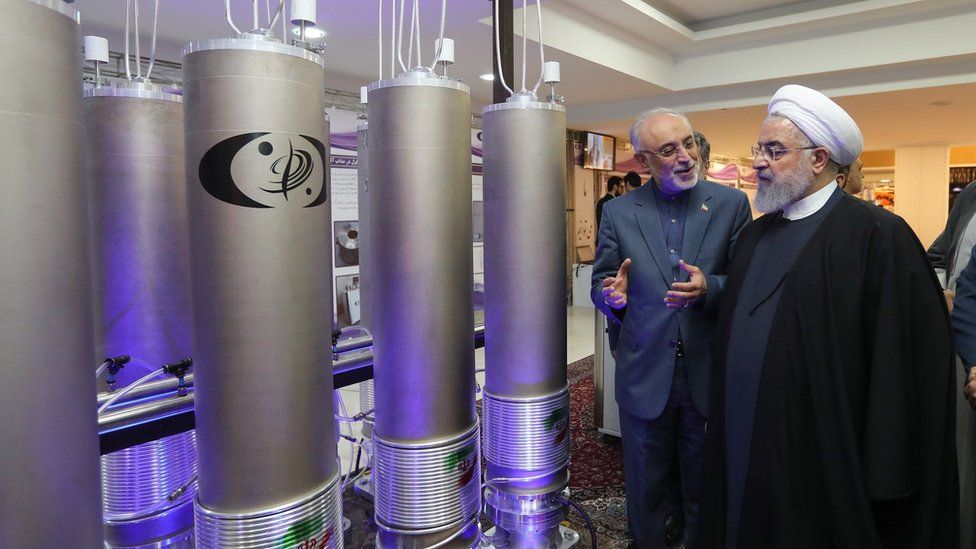
- 27 Dec 2023
Why is it in the News?
Iran has increased the rate at which it is producing near weapons-grade uranium in recent weeks, reversing a previous slowdown that started in the middle of this year, the International Atomic Energy Agency said in a report.
What is Uranium Enrichment?
- Natural uranium is comprised of two isotopes, with approximately 99% being U-238 and only about 0.7% being U-235.
- U-235 is a fissile material capable of sustaining a chain reaction within a nuclear reactor.
- The enrichment process involves increasing the proportion of U-235 through isotope separation, effectively isolating U-238 from U-235.
- For the production of nuclear weapons, enrichment is necessary up to 90% or more, referred to as weapons-grade uranium.
- Low-enriched uranium, typically containing a 3-5% concentration of U-235, is suitable for generating fuel for commercial nuclear power plants.
- In contrast, highly enriched uranium, boasting a purity of 20% or more, finds application in research reactors.
Key Facts About Uranium:
- Discovered in 1789 by the German chemist Martin Klaproth, Uranium is a silvery-white metallic chemical element found in the periodic table, characterized by its atomic number 92.
- This element holds the distinction of having the highest atomic weight among all naturally occurring elements.
- Naturally present in low concentrations in soil, rock, and water, uranium is commercially extracted from minerals like uraninite.
- The mining of uranium ore can be undertaken through open pits or underground excavations, followed by crushing and processing at a mill to isolate the valuable uranium.
- An alternative method involves the direct dissolution of uranium from ore deposits in the ground, known as in-situ leaching, with the extracted uranium then pumped to the surface.
About the International Atomic Energy Agency (IAEA):
- The International Atomic Energy Agency is an intergovernmental organization that seeks to promote the peaceful use of nuclear energy and to inhibit its use for any military purpose, including nuclear weapons.
- Established as an autonomous entity through its international treaty, the IAEA Statute, the organization, nonetheless, reports to both the United Nations General Assembly and the Security Council.
- Headquartered in Vienna, Austria, the IAEA collaborates with its Member States and various global partners to advance the safe and peaceful utilization of nuclear technologies.
- It employs nuclear safeguards, encompassing monitoring, inspection, information analysis, and other measures, to ensure the peaceful nature of nuclear activities and to detect and deter any potential diversion towards weapons-related purposes.
- The IAEA plays a crucial role in implementing comprehensive safeguards agreements mandated by the Nuclear Non-Proliferation Treaty (NPT), acting as a frontline defense against nuclear weapons proliferation.
- Additionally, the agency facilitates the exchange of scientific and technical information among its Member States.
- A key function of the IAEA is to bolster national, regional, and international capabilities to respond effectively to nuclear and radiological incidents, thereby minimizing their impact.
Speed up measures for a new dam at Mullaperiyar, Kerala tells Central Water Commission (The Hindu)
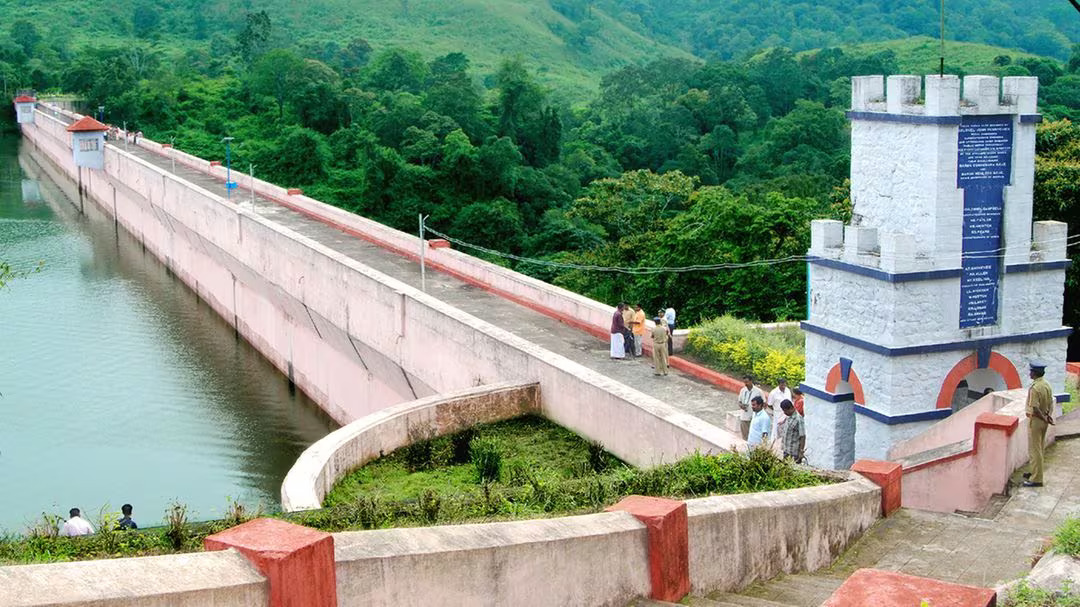
- 27 Dec 2023
Why is it in the News?
Recently the State government of kerala has urged the Centre to speed up measures for building a new dam at Mullaperiyar in the Idukki district at a meeting with the Central Water Commission.
About the Central Water Commission (CWC):
- The Central Water Commission (CWC) is a leading technical organization in India dedicated to water resources management.
- Currently operating as an attached office of the Ministry of Jal Shakti, Department of Water Resources, River Development, and Ganga Rejuvenation, Government of India, it plays a pivotal role in overseeing various aspects of water resource management nationwide.
Key Functions:
- Initiation and Coordination: The Commission is responsible for initiating, coordinating, and advancing schemes in collaboration with concerned State Governments.
- These schemes focus on controlling, conserving, and utilizing water resources for Flood Control, Irrigation, Navigation, Drinking Water Supply, and Water Power Development.
- Investigation and Execution: The CWC undertakes the investigation, construction, and execution of water resource schemes as deemed necessary.
- Leadership and Structure: The Commission is led by a Chairman, holding the status of Ex-Officio Secretary to the Government of India.
- The organizational structure includes three wings:
- Designs and Research (D&R) Wing
- River Management (RM) Wing
- Water Planning and Projects (WP&P) Wing
- Each wing is overseen by a full-time member with the status of Ex-Officio Additional Secretary to the Government of India.
- Headquarters: The headquarters of the Central Water Commission is located in New Delhi.
Key Facts About Mullaperiyar Dam:
- The Mullaperiyar Dam is a masonry gravity dam, situated on the Periyar River in Thekkady, Idukki district of Kerala.
- Situated at an elevation of 881 meters above sea level, it graces the Cardamom Hills within the Western Ghats.
- The dam is strategically located at the convergence of the Mullayar and Periyar rivers.
- Its construction, led by the British Corps of Royal Engineers under Pennycuick, commenced in 1887 and concluded in 1895.
- Utilizing limestone and "Surkhi" (a blend of burnt brick powder, sugar, and calcium oxide), the dam serves the purpose of redirecting west-flowing River Periyar waters to the rain shadow regions of Theni, Madurai, Sivaganga, and Ramanathapuram districts in Tamil Nadu.
- The Periyar National Park is located around the dam's reservoir.
- Despite its location in Kerala, the dam is operated and maintained by Tamil Nadu under a 999-year lease agreement established during British rule.
‘Dunki’ and immigration: How the first modern passports came to be (Indian Express)
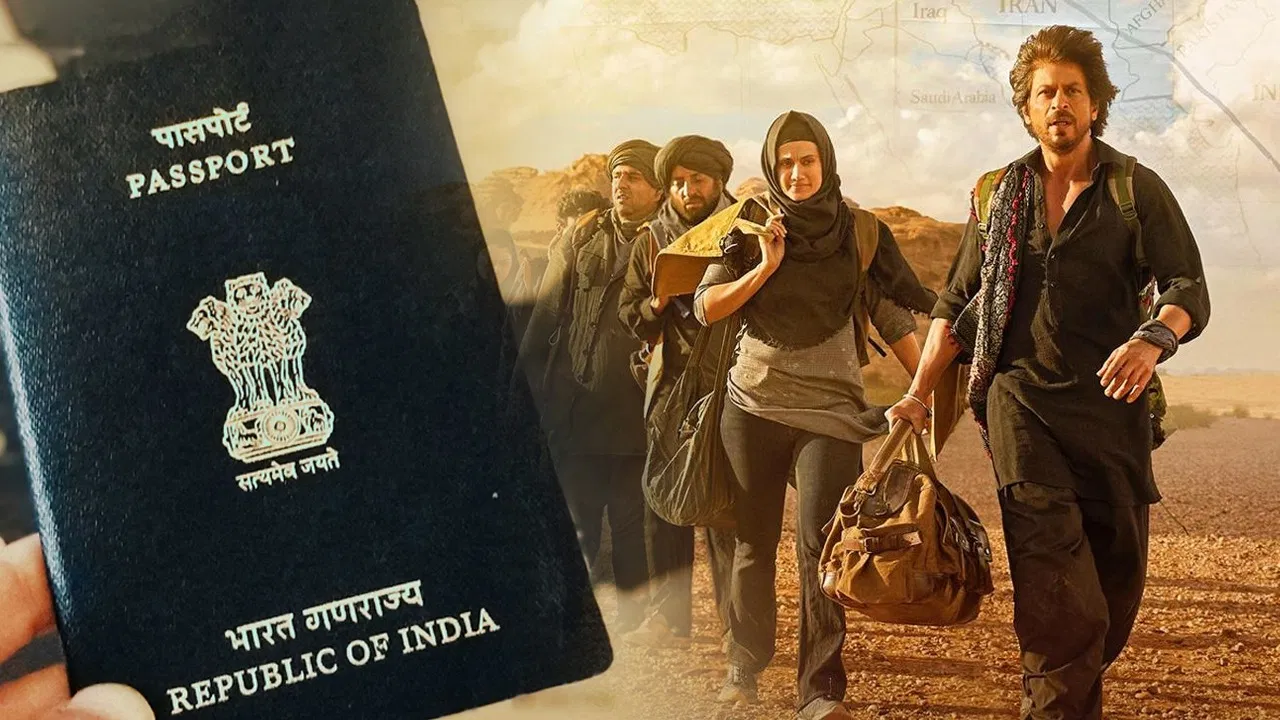
- 23 Dec 2023
Why is it in the News?
The recently released Shah Rukh Khan’s movie ‘Dunki’ is said to be based on the ‘donkey route’ or ‘donkey flight’ that lakhs of Indians take to reach countries like the US, the UK or some other European countries.
What is a Donkey Journey?
- Dunki is the Punjabi idiom that means to "hop from place to place", according to the Migration Policy Institute (MPI).
- It is a colloquial term for "donkey flights" or the "donkey flights method", which is a dangerous illegal immigration technique involving crossing a country's borders through a backdoor route via multiple stops in other countries.
How does the donkey flight method or dunki work?
- The desire for a higher quality of life has given rise to an industry driven by "agents" who charge exorbitant fees to help smuggle people to the country of their choice.
- Some agents may even run legitimate businesses while offering this dangerous option.
- The agents can offer various services, from fake papers to help through otherwise legal migration processes to smuggling people through ship containers.
Which countries are most targeted using the Dunki method?
- While donkey flight can be used to enter any country, the US, Canada, and the UK are some of the most popular destinations undertaken by Indian immigrants.
- According to a report, between February 2019 and March 2023, as many as 149,000 Indians were detained for attempting to enter the US illegally.
- Of this, most of those detained were from Gujarat and Punjab.
Risks involved in the dunki method:
- Dunki comes with tremendous risks, including the risk of capture, imprisonment, and deportation.
- When facilitated by an agent, the system is highly exploitative.
- Many sell off their assets, including ancestral land, to pay these agents.
- Agents may also withhold people's passports or other important documents to extort more money and assets.
- Moreover, smuggled migrants are also more vulnerable to becoming victims of other crimes during the smuggling process.
- The terrains of the places through which immigrants may have to travel pose a range of risks, including harsh weather conditions, rugged terrains, and access to basic resources like food and water.
- It must be noted that migrant smuggling is not the same as human trafficking.
- However, these crimes may sometimes interlink, adding another layer of risk for those engaging in illegal immigration.
About Passports:
- Rooted in history, passports trace back to mentions in the Hebrew Bible and structured systems in nations like France and the UK.
- The evolution into modern passports was catalyzed by the British Nationality and Status of Aliens Act in 1914, introducing features such as photographs and distinctive characteristics.
- The League of Nations' 1920 conference sought to standardize passport regulations, contributing to the establishment of a common British system.
- During the 1920s, the United States linked immigration laws to passports, imposing limitations on inflows.
- Despite initial reservations, passports have persisted as an integral element of contemporary citizenship.
- Indian Passports: The initiation of issuing Indian passports dates back to the First World War (1914-1918) through the Defence of India Act, as mandated by the British government for travel.
Govt Notifies Changes in PLI Scheme for White Goods (Business Standard)

- 11 Oct 2023
Why in the News?
The central government has introduced changes to the rules governing the production-linked incentive (PLI) scheme for white goods, specifically air conditioners and light-emitting diode lights, with the goal of ‘simplifying the scheme’s operations’ and promoting the ease of doing business, according to an official statement on Wednesday.
What are White Goods?
- Major home appliances, commonly known as white goods, encompass substantial household devices like stoves, refrigerators, freezers, washing machines, tumble dryers, dishwashers, and air conditioners.
- While these durable consumer durables were initially available only in white, contemporary options offer a variety of colours, yet they persistently retain the term "white goods."
- Renowned for their robustness and extended lifespan, white goods are engineered to endure the rigours of daily use.
- Additionally, the term "white goods" may extend to white fabrics, particularly linen or cotton, including items like curtains, towels, or sheets, which historically were crafted from white cloth.
- In the beverage industry, the term "white goods" refers to colourless spirits such as vodka or gin.
What is Brown Goods?
- Brown goods refer to relatively lightweight electronic consumer durables, including computers, digital media players, TVs, and radios.
- In contrast to large household appliances (white goods), brown goods are primarily geared towards entertainment, communication, and convenience.
- Typically featuring electronic components, these devices are designed to deliver audio, video, or data-related services as their primary functions.
What is Grey Goods?
- When a commodity is traded through distribution channels, which are unofficial but legal are known as the grey goods.
- They are goods that are traded in a specific area, where the manufacturer does not intend to sell the product, but with different specifications.
- Grey goods are sold without the knowledge of the original manufacturer.
- They are typically less costly than the ones that are available by the authorised distributor.
- Also, they might be made to pertain to some jurisdiction.
- Example: A factory-unlocked version of the iPhone. It is made to suit US standards but is sold in India for a lesser price than the iPhone made for Indian standards.
- When it comes to such Grey goods, the manufacturer does not provide any warranty for the product.
Cabinet Approves Establishment of an Autonomous Body Mera Yuva Bharat (PIB)
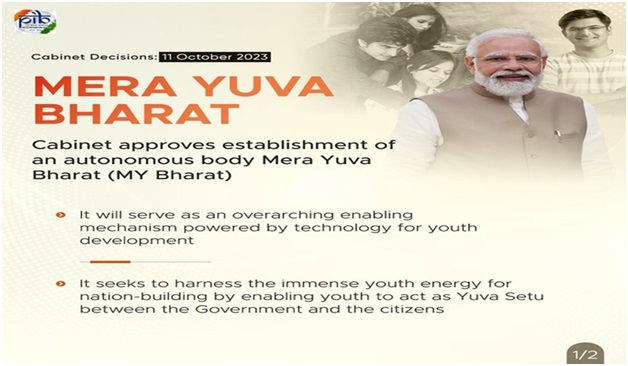
- 11 Oct 2023
Why in the News?
The Union Cabinet, chaired by Prime Minister Shri Narendra Modi, has approved the establishment of an autonomous body Mera Yuva Bharat (MY Bharat).
About Mera Yuva Bharat (MY Bharat):
- Mera Yuva Bharat (MY Bharat), an autonomous body will benefit the youth in the age group of 15-29 years, in line with the definition of ‘Youth’ in the National Youth Policy.
- In the case of programme components specifically meant for adolescents, the beneficiaries will be in the age group of 10-19 years.
- It will help in Setting the focus of the Government on youth-led development and to make the Youth “active drivers” of development and not merely “passive recipients”.
- It will be launched on 31st October 2023 on National Unity Day.
Objective:
- The primary objective of Mera Yuva Bharat (MY Bharat) is to make it a whole of Government platform for youth development.
- With access to resources & connection to opportunities, youth would become community change agents and nation builders allowing them to act as the Yuva Setu between the Government and the citizens.
- It seeks to harness the immense youth energy for nation-building.
The establishment of Mera Yuva Bharat (MY Bharat) would lead to:
- Leadership Development in the Youth:
- Improve leadership skills through experiential learning by shifting from isolated physical interaction to programmatic skills.
- Investing more in youth to make them social innovators, and leaders in the communities.
- Setting the focus of the Government on youth-led development and making the Youth “active drivers” of development and not merely “passive recipients”.
- Better alignment between youth aspirations and community needs.
- Enhanced efficiency through Convergence of existing programmes.
- Act as a one-stop shop for young people and Ministries.
- Create a centralized youth database.
- Improved two-way communication to connect youth government initiatives and activities of other stakeholders that engage with youth.
- Ensuring accessibility by creating a digital ecosystem.
Why There is a Need for Such Initiative?
- India’s youth are to play a critical role in defining the future of the nation.
- There is a need to establish a new contemporary technology-led platform for the Government to engage with the present-day youth.
- Ensuring accessibility by creating a digital ecosystem
- Mera Yuva Bharat supported by a technology platform would help to increase the Youth outreach efforts of the Department of Youth Affairs.
Mukundra Hills Tiger Reserve in Rajasthan Now Opens for Safari Tours (TOI)
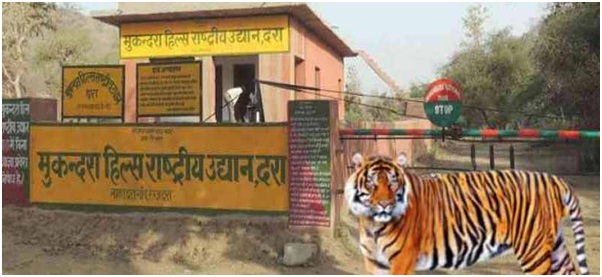
- 10 Oct 2023
Why in the News?
The forest department started the inaugural jungle safari at the Mukundra Hills Tiger Reserve on Monday, which marks the beginning of organised tiger reserve tours for tourists in four locations across the state.
About Mukundra Hills Tiger Reserve:
- Location: Mukundra Hills Tiger Reserve, also known as Darrah Wildlife Sanctuary, spans across four districts – Bundi, Kota, Jhalawar, and Chittorgarh in Rajasthan.
- The reserve is nestled in a valley formed by two parallel mountains, Mukundra and Gargola.
- Establishment: In 2013, the tiger reserve was formed, encompassing Mukandra National Park, Dara Sanctuary, Jawahar Sagar Sanctuary, and a section of Chambal Sanctuary.
- Initially, it served as a hunting preserve for the Maharaja of Kota.
- River: Positioned on the eastern bank of the Chambal River, the reserve is crisscrossed by its tributaries.
- Vegetation: The reserve features a Dry Deciduous Forest.
- Flora: The dominant species is Kala Dhok or Kaladhi (Anogeissus pendula), accompanied by Khair, Ber, Kakan, Raunj, and more.
- On elevated slopes, Anogeissus pendula gives way to Anogeissus latifolia, coexisting with Bel, Salar, Uum, and Shisham.
- Fauna: Noteworthy fauna include Leopard, Sloth bear, Nilgai, Chinkara, Spotted Deer, Small Indian Civet, Toddy Cat, Jackal, Hyena, Jungle Cat, and Common Langur, among others.
- The region is also home to various reptiles and amphibians, such as Pythons, Rat Snake, Buff-striped keelbacks, Green keelbacks, crocodiles, turtles, Gharial and Otters.
SUGAM REC Mobile App for 54EC Bonds Investors (PIB)
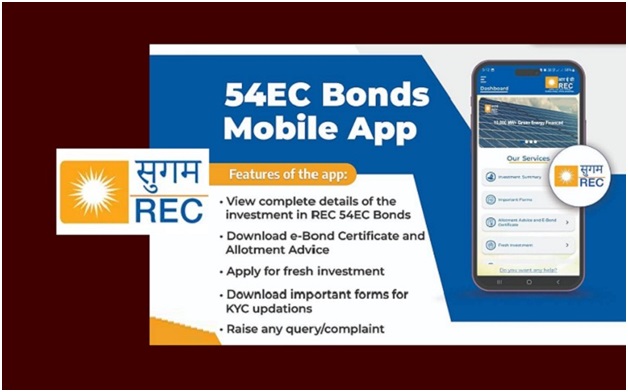
- 07 Oct 2023
Why in the News?
Recently, REC Limited, the Maharatna Central Public Sector Enterprise launched a SUGAM REC mobile application.
What is the SUGAM REC App?
- The SUGAM REC App caters exclusively to current and prospective investors in REC's 54EC Capital Gain Tax Exemption Bonds.
- Users can conveniently download e-bond certificates, apply for new investments, access essential forms for KYC updates, and connect with REC's Investor Cell through call, email, or WhatsApp.
What are 54EC Bonds?
- Also known as Capital Gain Bonds, these fixed-income instruments offer capital gains tax exemption under section 54EC.
- Investors can save on income tax for long-term capital gains by investing in these bonds within six months of the gain.
- With a fixed lock-in period of 5 years, the bonds can be held in either Physical or Demat form.
- Issued by government-managed institutions, they fund specific capital projects and derive their name from the relevant section of the Income Tax Act, 1961.
Key Facts about REC Limited:
- A 'Maharatna' company under the Ministry of Power, Government of India.
- Registered with RBI as a non-banking finance company (NBFC), Public Financial Institution (PFI), and Infrastructure Financing Company (IFC).
- Established in 1969 to address severe drought and famine, focusing on energizing agricultural pump sets for irrigation and reducing reliance on monsoons.
- Provides long-term loans and financing products to State, Centre, and Private Companies for infrastructure asset creation.
- It is the nodal agency for initiatives like Pradhan Mantri Sahaj Bijli Har Ghar Yojana (SAUBHAGAYA), Deen Dayal Upadhaya Gram Jyoti Yojana (DDUGJY), and National Electricity Fund (NEF) Scheme.
Ayushman Arogya Mandir (The Hindu)
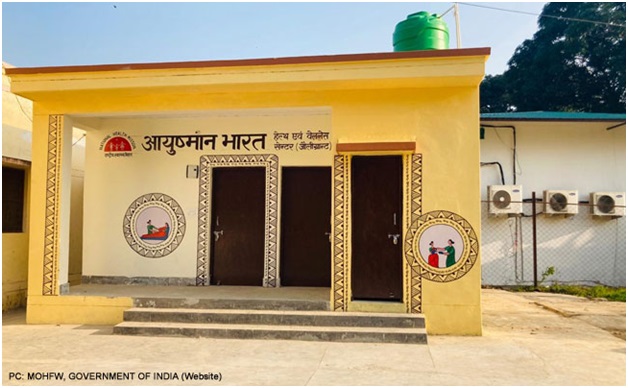
- 30 Nov 2023
Why is it in the News?
Recently, the Union Government has decided to rename the current Ayushman Bharat Health and Wellness Centres (AB-HWCs) as 'Ayushman Arogya Mandir.'
About Ayushman Arogya Mandir:
- The government has decided to rename the Ayushman Bharat-Health and Wellness Centres as 'Ayushman Arogya Mandir'
- The rebranded AB-HWCs will also have a new tagline -- 'Arogyam Parmam Dhanam'.
- Under the Government of India's flagship Ayushman Bharat Yojana, more than 1.6 lakhs AB- HWCs have been successfully established across states and UTs over the last five years with 219 crore footfalls so far.
- Ayushman Arogya Mandir is an attempt to move from a selective approach to health care to deliver a comprehensive range of services spanning preventive, promotive, curative, rehabilitative, and palliative care.
- It has two components which are complementary to each other.
- Under its first component, 1,50,000 Ayushman Arogya Mandir will be created to deliver Comprehensive Primary Health Care, that is universal and free to users, with a focus on wellness and the delivery of an expanded range of services closer to the community.
- The second component is the Pradhan Mantri Jan Arogya Yojana (PM-JAY) which provides health insurance cover of Rs. 5 lakhs per year to over 10 crore poor and vulnerable families seeking secondary and tertiary care.
- Ayushman Arogya Mandirs are envisaged to deliver an expanded range of services that go beyond Maternal and child health care services.
- It includes care for non-communicable diseases, palliative and rehabilitative care, Oral, Eye, and ENT care, mental health, and first-level care for emergencies and trauma , including free essential drugs and diagnostic services
- More than 2.71 crore wellness sessions have been held at these centers.
Fast Track Special Court (FTSC) (The Hindu)
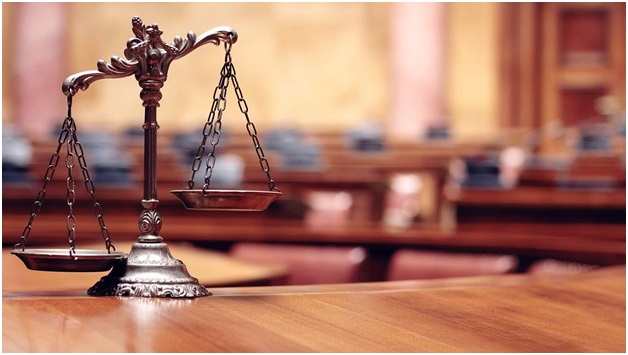
- 30 Nov 2023
Why is it in the News?
The Union Cabinet recently gave its approval for the three-year extension of fast-track courts that are specifically used to handle sexual offense cases.
About Fast Track Special Court (FTSC):
- The Fast Track Special Court (FTSC) initiative started in August 2019 as a centrally sponsored scheme to handle cases related to rape and the POCSO Act.
- Originally planned for one year, it got extended to March 2023, and now it's extended further until March 2026 with a financial allocation of Rs. 1952.23 crore from the Nirbhaya Fund.
- These specialized courts, totaling 761, including 414 exclusive POCSO Courts, operate across all States and Union Territories.
- The Department of Justice, Ministry of Law & Justice, oversees their implementation.
- The primary aim is to expedite justice, offering quick relief to victims and reinforcing the nation's commitment to ending sexual and gender-based violence.
- The expected outcomes of this scheme are significant.
- They include a substantial reduction in pending cases related to Rape & POCSO Act, providing swift access to justice for victims through improved facilities and expedited trials, and reducing the burden on the judicial system by managing the number of cases effectively.
Syrian Golan/Golan Heights (The Hindu)
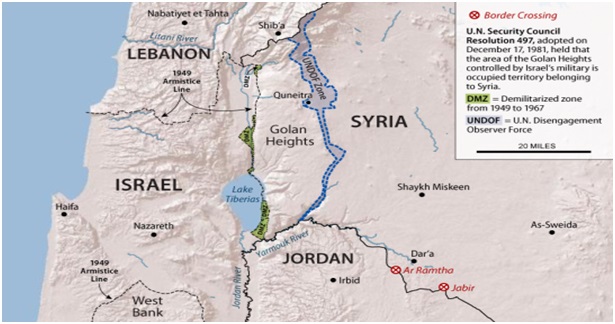
- 30 Nov 2023
Why is it in the News?
India has voted in favour of a draft resolution in the United Nations General Assembly (UNGA) that expressed deep concern over Israel not withdrawing from the Syrian Golan.
About the Syrian Golan/Golan Heights:
- Location: Situated in south-western Syria, the Golan Heights is a rocky plateau sharing borders with Israel, Lebanon, and Jordan.
- The elevated terrain overlooks the Jordan Rift Valley, housing the Sea of Galilee and the Jordan River, with Mount Hermon as a dominant feature.
- Demography: Over 40,000 people reside in the Israeli-occupied Golan, with a majority being Druze, an Arab minority practicing a distinct form of Islam.
- Although Israel offered Druze residents citizenship after annexation, most identified as Syrian and declined.
- Additionally, about 20,000 Israeli settlers live in the region.
- History of Conflict: Originally part of Syria, Israel captured the Golan Heights in 1967 during the Six-Day War and formally annexed it in 1981.
- Syria attempted to reclaim the area in the 1973 Middle East war but was unsuccessful.
- While an armistice was signed in 1974, international recognition of Israel's annexation is lacking, and Syria insists on the territory's return.
- Significance of Golan Heights: Israel argues that maintaining the Golan as a buffer zone is vital due to the Syrian civil war, protecting Israeli towns from neighboring instability.
- Concerns also include the fear of Iran, an ally of the Syrian president, establishing a permanent presence near the border for potential attacks on Israel.
- Both nations value the Golan's water resources and fertile soil.
Indian Ocean Tuna Commission (IOTC) (PIB)
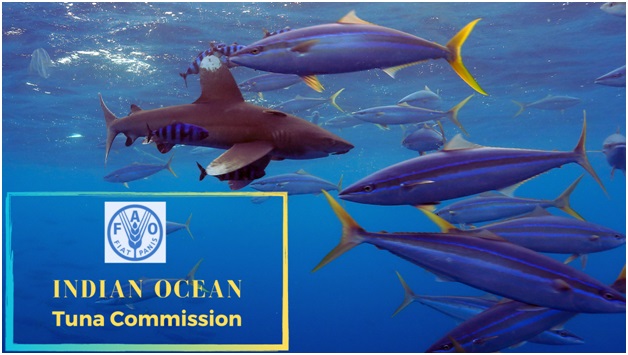
- 29 Nov 2023
Why is it in the News?
The Department of Fisheries, Ministry of Fisheries, Animal Husbandry & Dairying, GoI is organizing the 19th Working Party on Data Collection and Statistics (WPDCS19) of the Indian Ocean Tuna Commission (IOTC) from 28th November to 2nd December 2023.
About the Indian Ocean Tuna Commission:
- The Indian Ocean Tuna Commission (IOTC) is an intergovernmental organisation responsible for the management of tuna and tuna-like species in the Indian Ocean.
- It works to achieve this by promoting cooperation among its Contracting Parties (Members) and Cooperating Non-Contracting Parties in order to ensure the conservation and appropriate utilisation of fish stocks and encouraging the sustainable development of fisheries.
- The Food and Agriculture Organization of the United Nations adopted the Agreement for the Establishment of the Indian Ocean Tuna Commission during its 105th Session in Rome on 25 November 1993.
- The Indian Ocean holds the position as the second-largest tuna fishery globally, making it a crucial focus for the IOTC.
- Currently, the IOTC boasts 31 contracting parties, including countries and two cooperating non-contracting parties, Liberia and Senegal.
- Membership is open to Indian Ocean coastal countries, countries or regional economic integration organizations that are UN members, countries that are members of UN special organizations, and countries involved in tuna fishing in the Indian Ocean.
- India is an active member of the IOTC, with its headquarters located in Victoria, Seychelles.
PM to release ‘Collected Works of Pandit Madan Mohan Malaviya’ on 25th December (PIB)
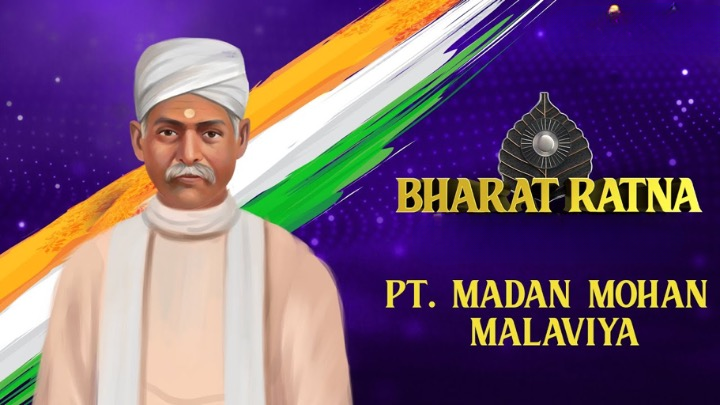
- 25 Dec 2023
Why is it in the News?
On the occasion of the 162nd birth anniversary of Mahamana Pandit Madan Mohan Malaviya, Prime Minister Shri Narendra Modi will release the first series of 11 volumes of ‘Collected Works of Pandit Madan Mohan Malaviya’, on 25th December, 2023.
About Pandit Madan Mohan Malaviya:
- Pandit Madan Mohan Malviya, born on December 25, 1861, in Allahabad, Uttar Pradesh, made significant contributions to India's education system and actively participated in the Indian Independence movement.
- Acknowledged as a venerable soul, Mahatma Gandhi bestowed upon him the title of 'Mahamana,' considering him an elder brother.
- In 2014, posthumously, Pandit Malviya was honoured with the Bharat Ratna, the highest civilian award in the country.
- In tribute to his legacy, the Indian Railways launched the Varanasi-New Delhi Mahamana Express in 2016.
Significant Contributions:
- Banaras Hindu University: In 1916, Pandit Madan Mohan Malviya played a pivotal role in the Indian independence struggle against British rule and established the Banaras Hindu University (BHU).
- Serving as the Vice-Chancellor at BHU from 1919 to 1938 showcased his dedication to education and leadership.
- Hindu Mahasabha: A founding member of the Hindu Mahasabha in 1906, Malaviya demonstrated his early leadership in this organization.
- As a social reformer and accomplished legislator, he contributed significantly during his 11-year tenure (1909–20) as a member of the Imperial Legislative Council.
- Scout and Guide Movement: Pandit Malviya was instrumental in establishing the Scout and Guide movement in India, showcasing his commitment to youth development and character building.
- 'Satyamev Jayate': Renowned for coining the famous slogan 'Satyamev Jayate,' Pandit Malviya proclaimed it during the 1918 Indian National Congress session when he served as the President.
- President of INC: Pandit Madan Mohan Malviya's leadership extended to the Indian National Congress, where he held the position of President for four sessions (1909, 1913, 1919, and 1932).
- His active role in the Civil Disobedience and Non-cooperation movements, led by Mahatma Gandhi, underscored his commitment to India's struggle for independence.
- Media Role: From 1924 to 1946, Pandit Malviya served as the Chairman of Hindustan Times and also founded several Hindi and English newspapers, including The Leader, Hindustan Dainik, and Maryada.
- Advocacy for Education and Social Causes: Malaviya championed free and compulsory primary education, opposed the system of indentured labour in the British Empire, and advocated for the nationalization of railways, reflecting his dedication to societal progress and reform.
“FLip” mutations of SARS-COV-2 may be evading immunity and leading to a surge in COVID cases, suggest researchers (DownToEarth)
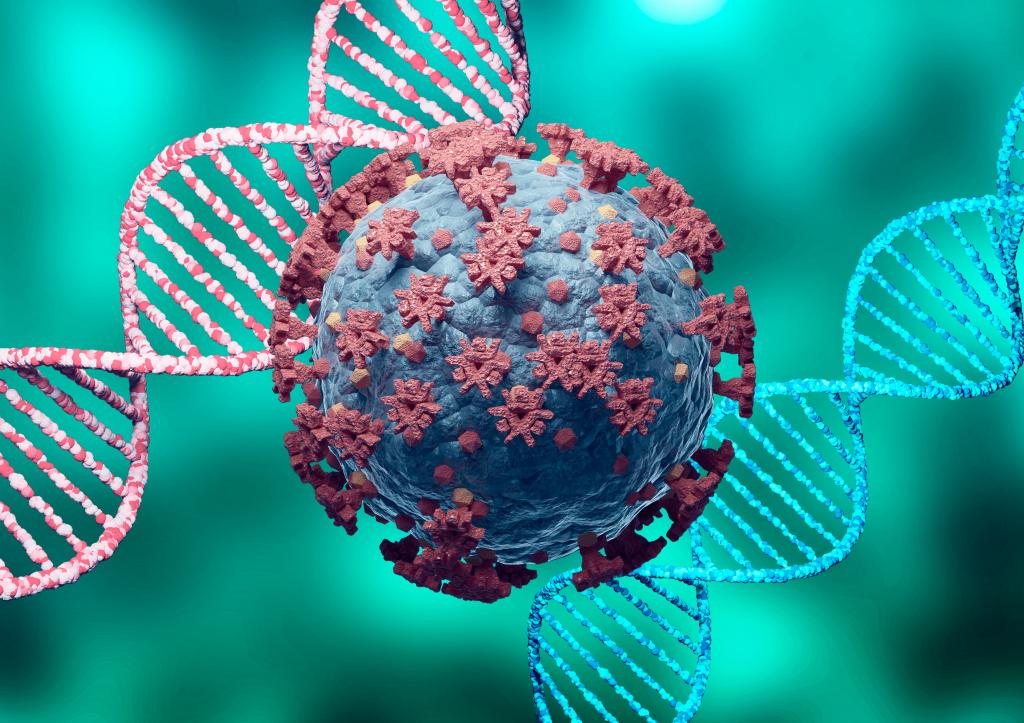
- 25 Dec 2023
Why is it in the News?
The omicron subvariant JN.1. is likely to soon become the dominant lineage of the SARS-CoV-2 virus worldwide, according to researchers at the University of Tokyo. The subvariant has a mutation in its spike protein, L455S, also called a “FLip” mutation.
Context:
- The mutations denoted as L455S and L455F are termed "FLip" mutations due to their role in interchanging the positions of amino acids F and L within the spike protein.
- These mutations enhance the virus's transmissibility.
- The substitution associated with these mutations reduces the receptor binding capacity of angiotensin-converting enzyme 2 (ACE2), a protein present in epithelial cells across various body parts, including the lungs, heart, and kidneys.
- ACE2 serves as a crucial entry point for the SARS-CoV-2 virus, binding through its spike-like protein on the virus's surface.
- The FLip mutations, specifically L455F and F456L, are characterized by the swapping of positions between two amino acids, F and L, within the spike protein.
What is Flip Mutation?
- A flip mutation, also known as bit flip mutation, is a genetic operator used in evolutionary algorithms, particularly genetic algorithms (GAs).
- It works by randomly flipping the values of individual genes (bits) within a chromosome, introducing small changes to the genetic makeup of an individual.
- Imagine a chromosome as a string of 0s and 1s, representing the genetic code for a specific trait or characteristic.
- A flip mutation randomly selects one or more of these bits and changes their values.
- For example, a 0 might be flipped to a 1, or vice versa.
- The following image depicts flip mutation:
How does it work:?
- Individual selection: An individual is selected from the population.
- Gene selection: One or more genes (bits) within the individual's chromosome are randomly chosen.
- Bit flipping: The value of each selected gene is flipped. This means that a 0 is changed to a 1, and vice versa.
World Climate Action Summit 2023 (NewsOnAir)
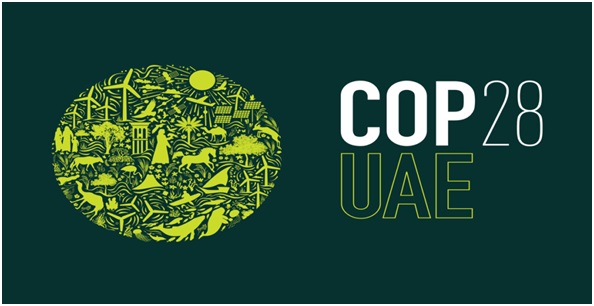
- 27 Nov 2023
Why is it in the News?
Prime Minister Modi will be on a two-day visit to Dubai, UAE from 30th November to attend the World Climate Action Summit.
About World Climate Action Summit:
- The World Climate Action Summit is the High-Level Segment of the 28th Conference of Parties (COP-28) to the United Nations Framework Convention on Climate Change (UNFCCC).
- COP-28 is being held from 28 November to 12 December 2023 under the Presidency of the UAE.
- The Conference of Parties to the UNFCCC provides a unique opportunity to impart momentum for collective action towards combating the shared challenge of climate change.
- The World Climate Action Summit will bring together heads of state and governments, leaders from civil society, business, youth, indigenous peoples' organisations, frontline communities, science, and other sectors.
- The summit aims to facilitate discussions on actions and plans to scale climate action.
- The COP 28 will focus on four paradigm shifts:
- Fast-tracking the energy transition and slashing emissions before 2030;
- Transforming climate finance, by delivering on old promises and setting the framework for a new deal on finance;
- Putting nature, people, lives, and livelihoods at the heart of climate action; and
- Mobilizing for the most inclusive COP ever.
- The summit may witness intense negotiations on unfulfilled promises of financial aid, particularly the yet-to-materialize $100 billion pledged by rich countries by 2020.
- Additionally, some countries, notably the European Union, are expected to advocate for a global deal to phase out unabated fossil fuels during COP28.
- During COP-26 in Glasgow, the Prime Minister announced five specific targets, titled "Panchamrit”, as India’s unprecedented contribution to climate action.
- The Prime Minister also announced Mission Lifestyle for Environment (LiFE) on that occasion.
- Climate change has been an important priority area of India’s G20 Presidency, and significant new steps have been captured in the New Delhi Leaders’ Declaration and other outcomes during our Presidency.
- COP-28 will provide an opportunity to take forward these successes.
Ministry of Textiles launches “Paat-Mitro” application to facilitate jute farmers (PIB)
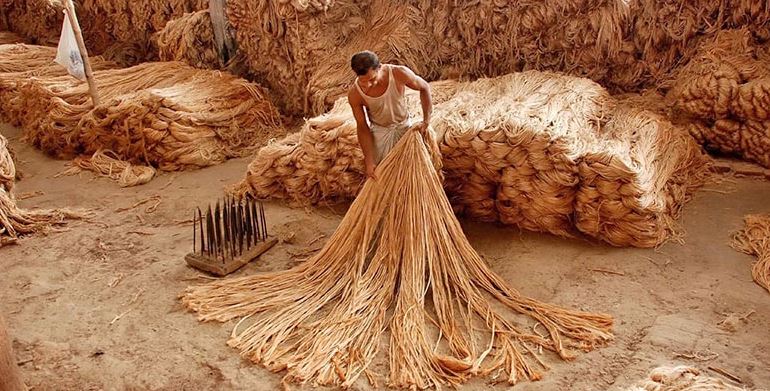
- 22 Dec 2023
Why is it in the News?
To provide important information about MSP and agronomy to jute farmers, the Ministry of Textiles launched “Paat-Mitro” - a mobile application, developed by The Jute Corporation of India Limited (JCI) during the ‘Jute Symposium’.
What is Paat Mitro?
- Paat Mitro is a mobile application crafted by the Jute Corporation of India Limited (JCI) with the primary aim of furnishing vital information on Minimum Support Prices (MSP) and agronomy to jute farmers.
Key Features:
- The application is accessible in six languages, ensuring inclusivity.
- All functionalities within the app are provided to users free of charge.
- Paat Mitro offers a comprehensive range of information, encompassing the latest agronomic practices, MSP details, Jute Gradation Parameters, farmer-centric schemes like ‘Jute-ICARE,’ weather forecasts, locations of JCI’s Purchase Centres, and Procurement Policies.
- Farmers can conveniently track the payment status for the raw jute they sell to JCI under the MSP Operation.
- The app integrates advanced technology features such as a Chatbot, facilitating farmers in resolving queries effectively.
Key Information about the Jute Corporation of India Limited (JCI):
- Established in 1971 under the aegis of the Government of India, the Jute Corporation of India Limited (JCI) serves as the official agency dedicated to ensuring minimum support prices (MSP) for jute cultivators.
- JCI functions as the executing body for several Government of India initiatives aimed at enhancing the jute crop and the welfare of jute growers.
- It operates under the administrative purview of the Ministry of Textiles.
- The geographical reach of JCI spans seven states renowned for jute cultivation in India, including West Bengal, Bihar, Assam, Meghalaya, Tripura, Orissa, and Andhra Pradesh.
- With an authorized and paid-up capital of Rs. 5 crore, JCI plays a pivotal role in implementing the government's policy decisions, obligatorily purchasing any quantity of jute offered by growers at support rates without quantitative limitations.
- Incurred losses during policy implementation by JCI are subject to reimbursement by the Government of India.
Digital Twins (TOI)
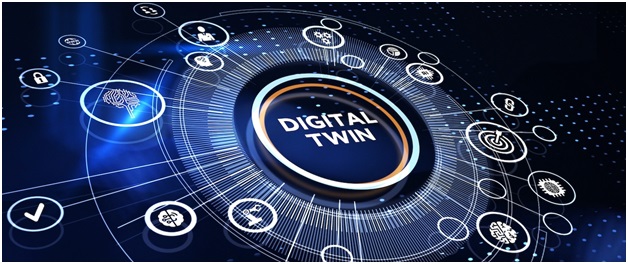
- 25 Nov 2023
Why is it in the News?
Recently, the Survey of India (SoI) and Genesys International, a prominent Indian mapping company, revealed a strategic collaboration for the implementation of a three-dimensional (3D) digital twin-mapping initiative in India.
About Digital Twin:
- Digital twins are digital representations of physical objects, people or processes.
- They aid decision-making through high-fidelity simulations of the twinned physical system in real-time and are often equipped with autonomous control capabilities.
- These replicas serve as dynamic and detailed counterparts, providing a real-time, data-driven simulation of their physical counterparts.
- The concept of digital twins has gained prominence with the advent of technologies like the Internet of Things (IoT), data analytics, and machine learning.
- In essence, a digital twin continuously collects and processes data from its physical counterpart, offering a comprehensive view of its behavior, status, and interactions.
- This real-time synchronization enables organizations to monitor, analyze, and understand the performance of physical assets or processes more effectively.
Applications:
- Manufacturing Sector: One primary application of digital twins is in the manufacturing sector.
- Manufacturers use digital twins to create virtual models of products and production processes.
- This allows for simulation, analysis, and optimization before physical prototypes are built, leading to reduced development costs and improved product quality.
- Healthcare: In healthcare, digital twins are employed to create personalized models of patients.
- These models, based on individual health data, help in predicting health outcomes, optimizing treatment plans, and advancing medical research.
- Transportation: Transportation industries utilize digital twins for optimizing logistics and predictive maintenance.
- For example, digital twins of aircraft engines can simulate performance under various conditions, aiding in proactive maintenance and minimizing downtime.
- Urban Planning: Urban planning benefits from digital twins by creating virtual models of entire cities.
- This assists in designing and optimizing infrastructure, managing resources efficiently, and planning for future growth and development.
- Industries: In industrial settings, digital twins of production processes enable real-time monitoring, troubleshooting, and optimization, leading to increased efficiency and reduced downtime.
Deepfakes (TOI)
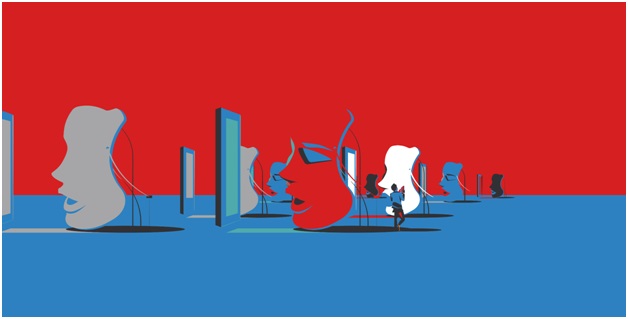
- 25 Nov 2023
Why is it in the News?
The government has warned top social media and internet companies that their platforms may be temporarily suspended and even be ordered blocked in case they are unable to tackle the menace of deepfakes.
What are Deepfakes?
- The term "deepfake" combines the concepts of deep learning with the fabrication of content.
- Deepfakes involve the creation of synthetic images and audio using machine-learning algorithms, intending to disseminate misleading content by replacing a real person's appearance, voice, or both with artificially generated likenesses or voices.
- These manipulated creations can either depict nonexistent individuals or simulate real people engaging in actions or utterances they never did.
- Originating in 2017, the word "deepfake" emerged when a Reddit user named "deepfakes" shared explicit videos featuring celebrities.
- The process of crafting deepfakes utilizes machine learning models employing neural networks to manipulate visual and auditory elements.
- To generate a convincing deepfake video, creators train the neural network on extensive real footage of the targeted person, facilitating a realistic understanding of their appearance from various angles and lighting conditions.
- This trained network is then combined with computer graphics to overlay the person onto a different actor.
- Regrettably, this technology is increasingly exploited for malicious purposes, including scams, celebrity impersonation, election interference, social engineering, disinformation attacks, identity theft, and financial fraud.
- The distinguishing factor of deepfakes lies in their challenging detection due to their sophisticated nature.
Investor Risk Reduction Access platform (Indian Express)
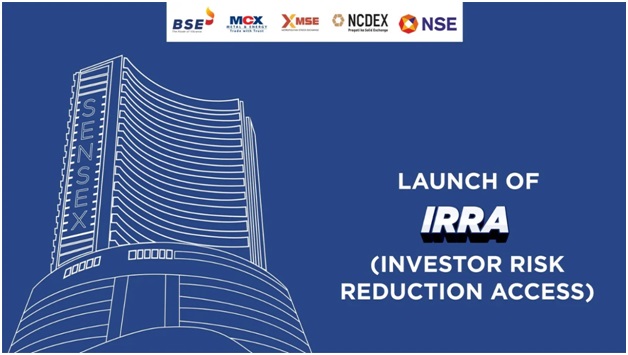
- 24 Nov 2023
Why is it in the News?
Recently, the chairperson of the Securities and Exchange Board of India (SEBI) launched the Investor Risk Reduction Access platform.
About the Investor Risk Reduction Access Platform:
- The Investor Risk Reduction Access Platform is created to make investing safer, especially when technical issues occur at the trading member's end, both at the primary site and the disaster recovery site.
- Its purpose is to let investors close their open positions and cancel pending orders using the IRRA platform when technical problems or unexpected outages make the trading member's site inaccessible.
- It's designed to minimize risks for investors involved in the market.
- The platform is not for making new positions or orders;
- its role is solely to cancel pending orders.
- This platform is accessible to trading members supporting internet-based trading (IBT) and Security Trading through Wireless Technology (STWT) for their investors.
- However, it is not available for algo trading and institutional clients.
- All major stock exchanges – BSE, NSE, NCDEX, MCX, and Metropolitan Stock Exchange of India (MSE) – have collaborated to develop this platform.
- Stock exchanges can keep an eye on factors such as connectivity, order flow, and social media updates.
- They can independently activate the IRRA service if necessary, without waiting for a request from the trading member.
Global Digital Public Infrastructure Repository (Financial Express)
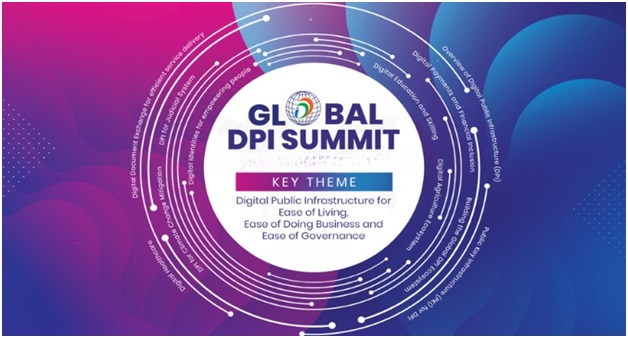
- 24 Nov 2023
Why is it in the News?
Prime Minister announced the launch of two India-led initiatives: the Global Digital Public Infrastructure Repository and a Social Impact Fund aimed at promoting the development of Social Impact Fund to advance Digital Public Infrastructure (DPI) in the Global South during the Virtual G20 Leaders’ Summit on 22nd November 2023.
About the Global Digital Public Infrastructure Repository:
- It was developed by the Ministry of Electronics and Information Technology (MeitY).
- It is an extensive resource center that combines knowledge and insights from G20 members and visiting countries.
- Its primary objective is to fill the knowledge gap in the decision-making processes and methodologies necessary for designing, constructing, deploying, and governing Digital Public Infrastructures (DPIs).
- The GDPIR presents information in a standardized format from countries and organizations that have successfully implemented DPIs on a large scale.
- This includes elements such as maturity scales, source codes (where available), and governance frameworks.
- Currently, the GDPIR showcases 54 DPIs from 16 countries.
- The DPIs from India featured in the GDPIR include
- Aadhaar, Unified Payments Interface (UPI), eSanjeevani, Ayushman Bharat Digital Mission (ABDM), DigiLocker, Umang, Co-WIN, Government e-marketplace, API Setu, Diksha, E-Hospital and Poshan Tracker etc.
What about the Social Impact Fund?
- The fund will financially support countries developing DPIs, providing “upstream technical and non-technical assistance”.
- The platform allows other governments, international organisations, and philanthropies to contribute to the fund too.
- India has pledged an initial commitment of $25 million (USD) to the fund.
Tantalum (NewsOnAir)
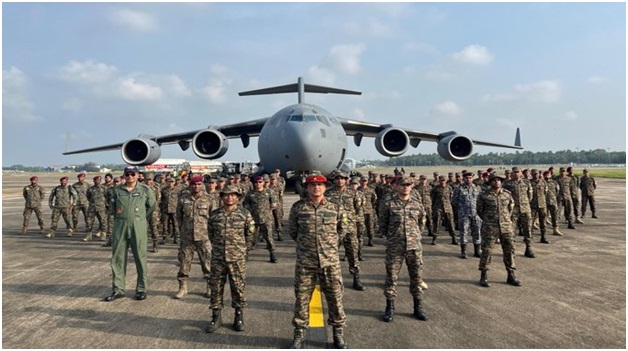
- 23 Nov 2023
Why is it in the News?
The Indian Armed Forces contingent comprising 81 personnel departed for Australia on Wednesday to take part in the second edition of Joint Military Exercise AUSTRAHIND-23.
About Exercise AUSTRAHIND-23:
- Exercise AUSTRAHIND-23 was established in 2022, with its first edition held in Mahajan, Rajasthan.
- It is planned as an annual training event, alternating between India and Australia.
- The primary goal of the exercise is to cultivate collaborative partnerships and share best practices between the two sides.
- This year, the exercise is scheduled to take place in Perth, Australia, spanning from November 22nd to December 6th, 2023.
- The Indian Army contingent, consisting of 60 personnel from a Gorkha Rifles battalion, will actively participate in this exercise.
- A key focus is on promoting interoperability during multi-domain operations in urban and semi-urban terrain, aligned with Chapter VII of the United Nations on peacekeeping operations.
- The joint exercise serves as a platform for exchanging ideas and collectively rehearsing tactics, techniques, and procedures for conducting tactical operations.
- Additionally, the exercise contributes to fostering understanding between the two militaries, further strengthening defense cooperation between the two friendly nations.
Other Exercises between India and the Aus:
- AUSINDEX - Naval exercise between India and Australia
- Exercise Pitch Black - It is a biennial warfare exercise hosted by the Royal Australian Air Force (RAAF).
Inter Command Ocean Sailing Race 2023 (NewsOnAir)
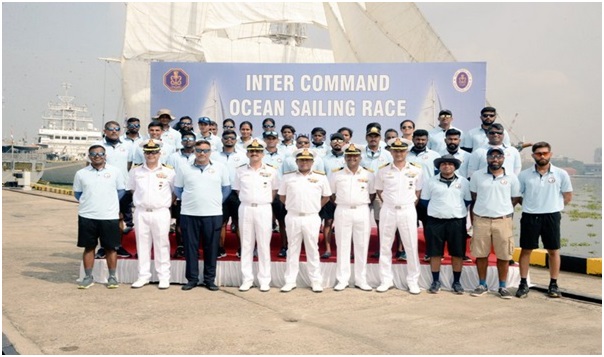
- 23 Nov 2023
Why is it in the News?
The second edition of the Inter-Command Ocean Sailing Race to Goa was flagged off from the Naval Base in Kochi on Wednesday.
About the Inter Command Ocean Sailing Race 2023:
- The Inter Command Ocean Sailing Race 2023 features four 40-footer sailboats for an exciting journey in the Arabian Sea which was:
- INSV Bulbul
- INSV Neelkanth
- INS Kadalpur, and
- INSV Hariyal
- Each boat has a team of eight people from three naval commands and a combined team from Andaman and Nicobar Command, including the Delhi area.
Details of the Race:
- Distance and Route: The race covers around 667km from Naval Base, Kochi, to Goa in about five days.
- Engine-Free Journey: Boats will use the wind to reach Goa without engines.
- Inclusive Crew: This edition includes both men and women officers and sailors, promoting equal opportunities.
- Competition: With 32 participants, each competing for the title, the boats will navigate through the Arabian Sea's currents and winds.
Organizational Framework:
- Event Host: The Southern Naval Command organizes the race with the Indian Naval Sailing Association in New Delhi.
- Coordination: The Indian Navy’s Offshore Sailing Club in Kochi and the Ocean Sailing Node in INS Mandovi, Goa, coordinate the event.
- Purpose: The race helps the Navy improve risk management and technical skills while fostering a spirit of adventure among the crew.
Government bans anti-cold drug combination for kids aged under four (Indian Express)

- 21 Dec 2023
Why is it in the News?
The Central Drugs Standard Control Organisation (CDSCO) has prohibited the use of anti-cold fixed drug combinations in children below four years of age.
What are Fixed Dose Combination (FDC) Drugs?
- Fixed-dose combination (FDC) drugs, also referred to as combination products, embody a formulation containing two or more active drugs within a single dosage form.
- The United States Food and Drug Administration (FDA) defines a combination product as a composition involving a drug and a device, a biological product and a device, or a combination of a drug, device, and biological product.
- While the conventional approach favours formulating drugs as single compounds, the acceptance of fixed-ratio combination products hinges on two key criteria:
- Dosage Requirements: Each ingredient in the combination must meet the dosage criteria tailored to a specific population group.
- Proven Advantages: The combination should demonstrate a clear advantage over administering individual compounds separately in terms of therapeutic effect, safety, or compliance.
- FDCs have witnessed significant popularity in the Indian pharmaceutical market, experiencing notable growth in recent years.
About the Central Drugs Standard Control Organization (CDSCO):
- The Central Drugs Standard Control Organization (CDSCO) serves as the National Regulatory Authority (NRA) in India, overseeing the medical devices industry per the Drugs & Cosmetics Rules.
- Positioned under the Ministry of Health & Family Welfare, it is led by the Drugs Controller General of India (DCGI) with its headquarters situated in New Delhi.
- Operationalizing under the provisions of the Drugs and Cosmetics Act, CDSCO is entrusted with several crucial responsibilities, including the approval of new drugs, the facilitation of clinical trials, the establishment of standards for drugs, ensuring control over the quality of imported drugs, and coordination of activities among State Drug Control Organizations.
- One of its significant roles lies in collaboration with state regulators for granting licenses related to specialized categories of critical drugs.
- These encompass vital medical components such as blood and blood products, I.V. fluids, vaccines, and sera.
- The CDSCO plays a pivotal role in upholding standards, ensuring quality, and fostering coordination across the regulatory landscape for the benefit of public health in India.
Hard Currency (Financial Express)
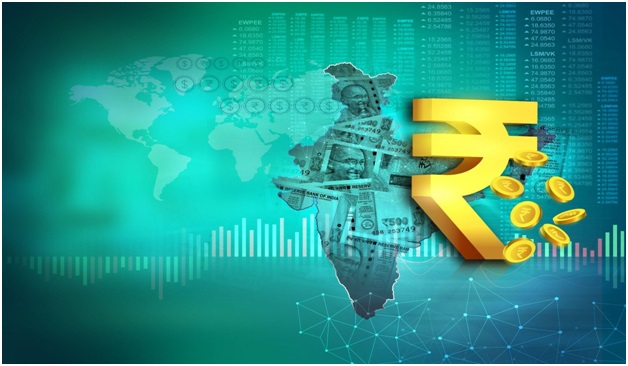
- 21 Nov 2023
Why is it in the News?
Recently, the Global Trade Research Initiative (GTRI) said in a statement that Conditions are not ripe to make INR a hard currency.
What is Hard Currency?
- Usually, developed countries issue hard currency, and this currency is easier to trade and receive funds from other countries or investors from other nations.
Key characteristics of hard currencies:
- Hard currency means a stable currency, and its value does not fluctuate much in the international markets.
- It makes hard money currency easily tradable.
- It is issued by a sound economy. Developed countries issue hard currency and it is accepted by all nations across the world.
- It is highly liquid and several countries prefer to accept hard currency instead of local currency as it has lesser fluctuations and can be easily converted to local currency.
- Hard currency is universally accepted and international investors have a sense of faith in hard currency for trading.
- Countries across the globe consider hard currency as a foreign currency reserve, further adding to its value.
- As hard currency is easily convertible and stable, it is widely used in international exchanges.
- The value of the hard currency does not change much in response to global events.
- When domestic currencies struggle, people start holding on to hard currencies to protect their wealth.
Examples of hard currencies:
- US dollar (USD)
- Euro (EUR)
- Japanese yen (JPY)
- British pound (GBP)
- Swiss franc (CHF) etc.
Onattukara Sesame (The Hindu)
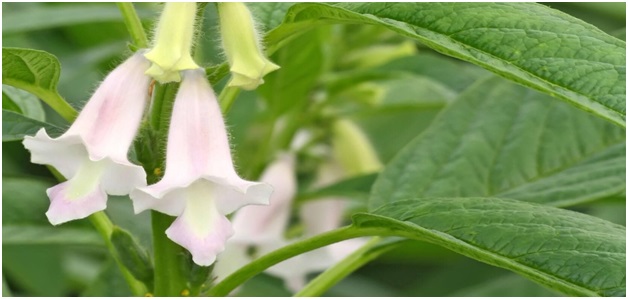
- 20 Nov 2023
Why is it in the News?
Efforts are being made to expand the cultivation of geographical indication (GI)-tagged Onattukara sesame.
About Onattukara Sesame:
- Onattukara sesame is a special sesame seed variety native to the Onattukara region of Kerala.
- It is renowned for its distinctive flavor, rich aroma, and exceptional nutritional and health value.
- In 2023, it received a geographical indication (GI) tag, recognizing its unique characteristics and link to the Onattukara region.
- This recognition serves as a testament to the exceptional qualities of Onattukara sesame and is expected to propel its demand and further empower the farmers of the region.
- Onattukara sesame distinguishes itself from other sesame varieties through its unique flavor profile.
- This distinctive flavor profile makes Onattukara sesame an indispensable ingredient in traditional Kerala cuisine, where it graces a variety of dishes, from curries and chutneys to sweet snacks.
- Distinguishing Features:
- Flavor and Aroma: Onattukara sesame has a nutty, slightly sweet flavor and a rich, earthy aroma.
- Nutritional Value: It is a rich source of vitamins and minerals, including vitamin E, calcium, magnesium, and iron.
- It also contains healthy fats, such as omega-3 and omega-6 fatty acids.
- Medicinal Properties: Traditionally, Onattukara sesame oil has been used in Ayurveda for its medicinal properties, including its ability to promote skin health, reduce inflammation, and relieve joint pain.
Sophisticated Analytical & Technical Help Institutes (SATHI) Initiative (The Hindu)
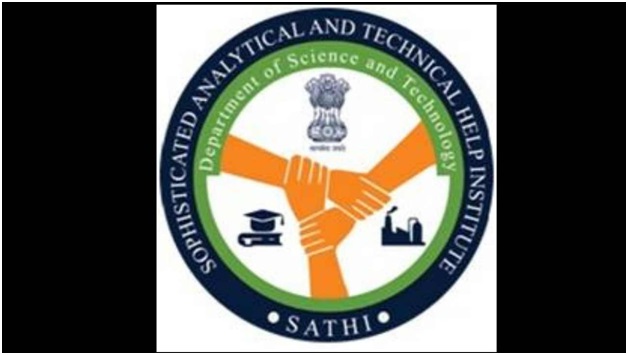
- 20 Nov 2023
Why is it in the News?
The cancellation of a call for proposals under the Department of Science and Technology's SATHI program by the Centre has raised concerns among higher education institutions.
About Sophisticated Analytical & Technical Help Institutes (SATHI) initiative:
- The Department of Science and Technology (DST) is starting a project to create a shared Science and Technology infrastructure facility called Sophisticated Analytical & Technical Help Institute (SATHI).
- This facility will be available for use by academic institutions, startups, manufacturing units, industries, and R&D labs.
- The goal is to offer efficiently managed services with high transparency, accessibility, and effectiveness all in one place, catering to the needs of industries, startups, and academia.
- In the first phase, SATHI facilities will be set up at IIT-Delhi, IIT-Kharagpur, and BHU-Varanasi.
- This initiative aims to benefit less-endowed organizations like MSMEs, startups, state universities, and colleges, fostering a strong culture of research collaboration across different institutions and disciplines.
Aims & Objectives of SATHI:
- Provide shared, professionally managed Science and Technology services and infrastructure.
- Ensure efficiency, accessibility, and transparency for the demands of faculty, researchers, scientists, and students from various institutes and organizations.
- Enable round-the-clock R&D activities with minimal downtime.
- Offer facilities for fabrication work, rapid prototyping, material testing, characterisation, device fabrication, smart manufacturing, and more.
- Attract and support R&D labs, industrial R&D, MSMEs, Incubators, Start-ups, etc.
- Organize short-term courses, workshops, seminars, and hands-on training programs on the use and application of various instruments and techniques.
- Provide technical help and scientific knowledge to both external and internal users/researchers.
- Train technicians for maintaining and operating sophisticated scientific instruments.
- Maintain a record of trained personnel for better societal outreach and utilization of trained manpower across different SATHI centers when needed.
Card-on-File Tokenisation (CoFT) (Business Standard)
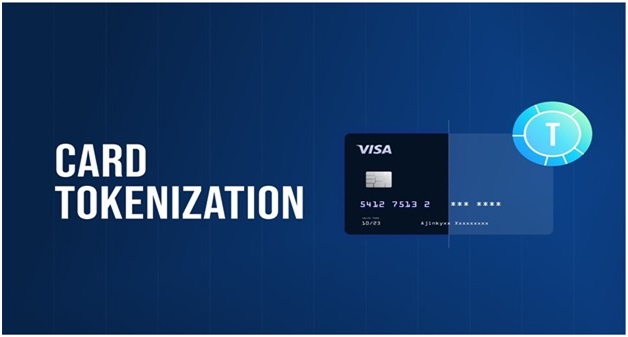
- 18 Nov 2023
Why in the News?
Recently, Visa has highlighted that the primary advantage of tokenization is a decreased risk of data breaches.
What is Card-on-File Tokenisation?
- Tokenisation is a process where the cardholder’s original card number, one which is written on the card and is extensively used for transactions and card identification, is replaced with a surrogate term called ‘token.’
- This process allows enhanced card protection by converting the customers’ card numbers into tokens.
- The exchange of tokens happens between the token requestor and the network, which empowers customers to receive a secure and reliable online payment experience.
- All relationship evidence of such exchange between token and crucial card information is securely saved in a vault that is only accessible to the card networks.
- Resultantly, the customers’ card details will be highly protected from online fraud and hackers.
How Does Card-on-File Tokenisation Work?
- When a customer makes a transaction by using their card at a tokenisation-based-authentication server:
- A credit/debit card is used for transactions at a POS device or an e-commerce website
- The tokenisation system receives and interprets the credit card number
- The tokenisation system goes on to replace the original credit card number with a 16-digit random character token for security
- The tokenisation system then provides the converted 16-digit random token number to the e-commerce marketplace and replaces the user’s credit card number with the same in their system
- For instance, card number (example): 4018 2255 6984 7854 will be replaced with token number: 4325 5214 8574 6658.
- The tokenisation system is an important tool for separating crucial data in ecosystems and databases while also offering enhanced card protection to cardholders.
India International Science Festival (PIB)
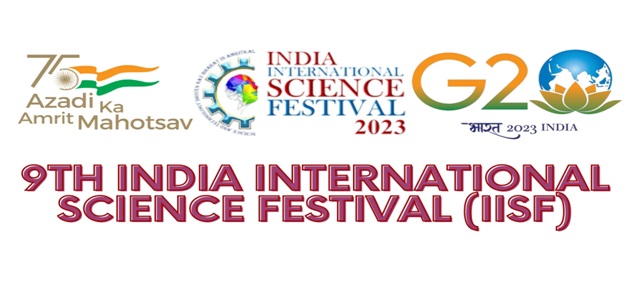
- 16 Nov 2023
Why in the News?
The 9th edition of the India International Science Festival (IISF) 2023 will be held at Faridabad, Haryana from January 17th-20th, 2024.
About the India International Science Festival (IISF):
- The India International Science Festival (IISF) is an annual science festival organized by the Ministry of Science and Technology, the Ministry of Earth Science, and Vijnana Bharati in India.
- The festival aims to promote science and technology in India and to showcase the latest advancements in these fields.
- The IISF has been held every year since 2007.
- The festival typically lasts for four days and features a variety of events, including exhibitions, seminars, workshops, and competitions.
- The exhibitions feature displays of scientific and technological innovations from India and around the world.
- The seminars and workshops provide opportunities for scientists and technologists to share their knowledge with the public.
- The competitions encourage students to participate in science and technology.
- The IISF is a major event in the Indian scientific community and has been praised for its role in promoting science education and public awareness of science.
- The festival has also been successful in attracting international participation, with scientists and technologists from around the world attending the event.
- The 2022 IISF was held in Bhopal, Madhya Pradesh, from January 21 to 24.
India International Science Festival (IISF) 2023:
- It will be held at the Campus of Translational Health Science and Technology Institute (THSTI) and Regional Centre for Biotechnology (RCB) of the Department of Biotechnology in Faridabad.
- Theme: 'Science and Technology Public Outreach in Amrit Kaal'.
- IISF 2023 will have a total of 17 themes to showcase scientific achievements, offering diverse benefits to participants and the general public.
One Station One Product’ scheme (New Indian Express)
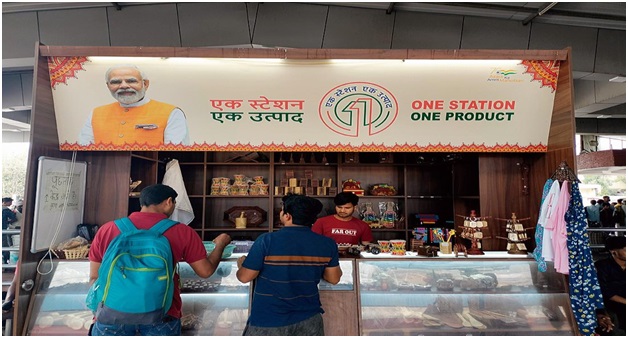
- 15 Nov 2023
Why in the News?
The Indian Railway has established more than a thousand outlets in railway stations across the nation under its ‘One Station One Product’ (OSOP) initiative which aimed at providing a platform for skilled artisans to sell their indigenous products.
About One Station One Product’ (OSOP):
- The OSOP scheme is a unique initiative by the Indian Railways and aims to provide livelihood opportunities through skill development to local artisans, potters, weavers, and craftsmen.
- It was announced in the Union Budget 2022-23.
- The scheme, designed by the National Institute of Design, Ahmedabad, provides distinctive outlets that give high visibility to indigenous products, benefiting local craftsmen.
- Railways allot the outlets at its stations through a tendering process.
- The scheme’s outreach measures include advertising, social media, public announcements, press notifications, and personal visits to artisans.
- The products at these outlets range from artifacts and handicrafts to textiles and traditional appliances, indigenous to the region, and are crafted by local artisans or tribals.
- They also include locally made or grown food products in processed or semi-processed forms.
- It provides uniquely designed sale outlets for locals to sell indigenous products, and is now operational at 1,037 stations nationwide.
Cloud Seeding (LiveMint)
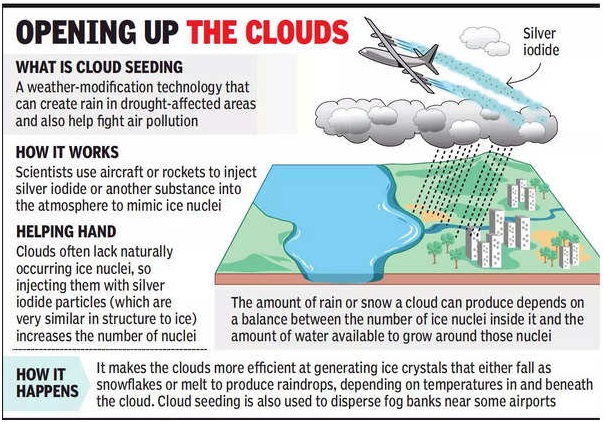
- 14 Nov 2023
Why in the News?
The Delhi government is mulling the use of artificial rain through cloud seeding this month to combat the air pollution crisis in the national capital.
What is Cloud Seeding?
- Cloud seeding is a weather modification technique aimed at increasing precipitation by dispersing substances into the air that serve as cloud condensation or ice nuclei.
- The primary goal is to encourage the formation and growth of precipitation particles within clouds.
- Commonly used substances for cloud seeding include silver iodide, potassium iodide, and liquid propane.
There are two main types of cloud seeding:
- Static cloud seeding: This type of seeding is used to increase precipitation in areas that are experiencing drought
- It involves releasing silver iodide or dry ice into clouds that are already producing precipitation.
- The silver iodide or dry ice acts as ice nuclei, which causes water droplets in the clouds to freeze and form snowflakes.
- The snowflakes then grow larger and fall to the ground as rain or snow.
- Dynamic cloud seeding: This type of seeding is used to increase the amount of precipitation that falls from clouds that are not yet producing precipitation.
- It involves releasing silver iodide into clouds that are still in the development stage.
- The silver iodide acts as condensation nuclei, which causes water vapor in the clouds to condense and form water droplets.
- The water droplets then grow larger and fall to the ground as rain or snow.
- Cloud seeding is typically done using aircraft, but it can also be done using ground-based generators or rockets.
- The aircraft or other seeding platform will fly into the clouds and release the silver iodide or dry ice.
- The seeding material will then spread throughout the cloud and begin to alter the microphysical processes.
- The effectiveness of cloud seeding is debated.
- Some studies have shown that it can increase precipitation by up to 30%, while other studies have shown that it has little or no effect.
- The effectiveness of cloud seeding is likely to vary depending on the type of clouds being seeded, the atmospheric conditions, and the seeding method used.
- Cloud seeding is used in a variety of countries around the world, including the United States, China, Russia, and Australia.
Exercise ‘CORPAT’ And ‘Bongosagar’ (NewsOnAir)
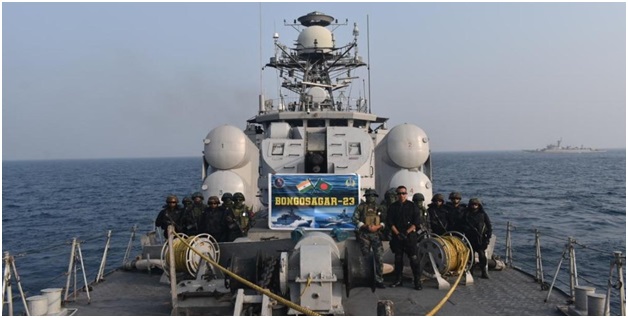
- 13 Nov 2023
Why in the News?
Recently, Exercise CORPAT and BONGOSAGAR between the Indian Navy and Bangladesh Navy were conducted in the Northern Bay of Bengal from 07 - 09 Nov 2023.
About Exercise CORPAT and Bongosagar:
- The 4th edition of the Bilateral Exercise between the Indian Navy and Bangladesh Navy, BONGOSAGAR-23, and the 5th edition of Coordinated Patrol (CORPAT) by the two navies were held at Visakhapatnam.
- Ships and aircraft from both navies undertook joint patrolling along the International Maritime Boundary Line and maritime exercises to enhance interoperability.
- Indian Navy Ships Kuthar, Kiltan, and Maritime Patrol Aircraft (MPA) Dornier participated in the exercise.
- The ships undertook communication drills, surface gun-shoots, tactical maneuvers, and other exercises.
- INS Kuthar is an indigenously built guided-missile Corvette, whereas INS Kiltan is an indigenously built anti-submarine Corvette.
- Both ships are part of the Indian Navy's Eastern Fleet based at Visakhapatnam, which functions under the operational command of the FOCINC ENC.
- CORPAT-23 also included the maiden Humanitarian Assistance and Disaster Relief drills held between the two navies.
- The bilateral exercises and coordinated patrols have strengthened mutual understanding and cooperation between the two navies.
World Energy Outlook 2023 (IEA)
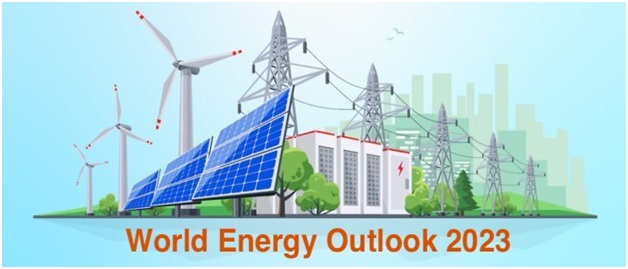
- 13 Nov 2023
Why in the News?
Recently, the International Energy Agency (IEA) released the World Energy Outlook (WEO) Report 2023.
About World Energy Outlook 2023:
- This flagship publication of the International Energy Agency (IEA) has appeared every year since 1998.
- It provides in-depth analysis and strategic insights into every aspect of the global energy system.
- This year, the report delves into how changes in economies and energy usage are meeting the increasing demand for energy amid geopolitical tensions and fragile energy markets.
- It evaluates the evolution of energy security fifty years after the establishment of the IEA and looks at what's necessary at the COP28 climate conference in Dubai to support the 1.5 °C goal.
- The publication analyzes today's energy trends, covering areas like investment, trade flows, electrification, and energy access.
About the International Energy Agency (IEA):
- The International Energy Agency (IEA) is an independent inter-governmental organization operating within the framework of the Organisation for Economic Co-operation and Development (OECD).
- Its mission involves collaborating with governments and industry to create a secure and sustainable energy future.
- Established in 1974 to safeguard oil supplies, it was a response to the 1973-1974 oil crisis, which exposed the vulnerability of industrialized nations to oil import dependencies due to an oil embargo.
- Comprising 31 member countries and eleven association countries, IEA candidates must be OECD members.
- India joined as an Associate member in 2017.
- The IEA publishes reports such as the World Energy Outlook, World Energy Balances, Energy Technology Perspectives, World Energy Statistics, and Net Zero by 2050.
Phreatomagmatic Eruptions (TOI)
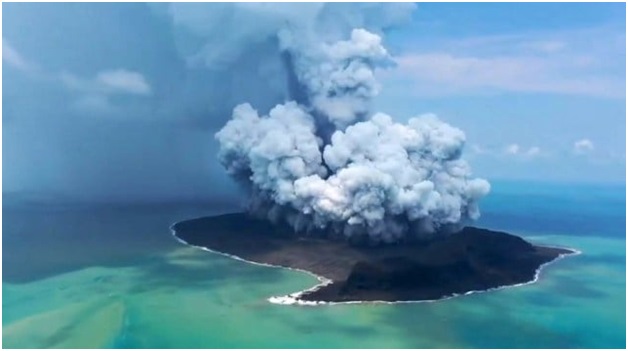
- 11 Nov 2023
Why in the News?
Recently a new island emerged near Japan's Ogasawara island chain after an undersea volcano erupted.
What is Phreatomagmatic Eruption?
- A phreatomagmatic eruption is a volcanic eruption caused by the interaction of magma and water.
- They differ exclusively from magmatic and phreatic eruptions.
- Unlike phreatic eruptions, the products of phreatomagmatic eruptions contain juvenile (magmatic) debris.
- Large explosive eruptions typically contain magmatic and phreatomagmatic components.
- Phreatomagmatic ash is formed by the same mechanism over a wide range of basic and acidic compositions.
- A blocky and uniform crust with low vesicle content is formed.
- Deposits from phreatomagmatic eruptions are thought to be better classified and finer-grained than those from magmatic eruptions.
- This is the result of higher fragmentation of phreatomagmatic eruptions.
About Ogasawara Islands:
- The Ogasawara Islands are a group of more than 30 small subtropical islands in the North-Western Pacific Ocean roughly 1,000 km south of the main Japanese Archipelago.
- It is also known as the Bonin Islands.
- It is one of the famous UNESCO World Heritage sites of Japan.
Energy Conservation Building Code (ECBC) (Indian Express)
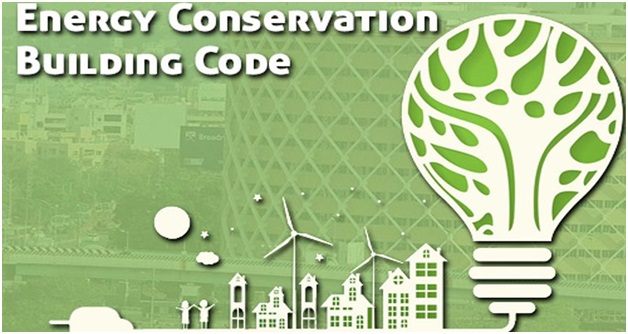
- 10 Nov 2023
Why in the News?
Paris-based International Energy Agency highlighted India’s Energy Conservation Building Code (ECBC), 2017 as something that sets it apart from other developing economies where “energy efficiency in buildings stands out as a laggard”.
About Energy Conservation Building Code (ECBC):
- Energy Conservation Building Code (ECBC) Released by the Bureau of Energy Efficiency (BEE).
- It was first released in 2007 and again updated in 2017.
- The purpose of ECBE is to set minimum energy standards for commercial buildings, with the objective of enabling energy savings of between 25 and 50% in compliant buildings.
- Commercial buildings include hospitals, hotels, schools, shopping complexes and multiplexes which have a connected load of 100 kW or more, or contract demand of 120 kVA or more.
- Also the code is for both new buildings and retrofitting existing buildings.
- Assessment Parameters: The Energy Conservation Building Code (ECBC) primarily looks at parameters like building design including envelope (walls, roofs, windows), lighting systems, and renewable energy integration among others.
- Tagging of buildings: Compliant buildings are assigned one of three tags in ascending order of efficiency, namely ECBC, ECBC Plus, and Super ECBC.
- 23 out of 28 states have notified ECBC rules. But only 15 states have notified rules based on the latest ECBC,2017.
- Five states — Gujarat, Maharashtra, J&K, Ladakh, and Manipur — are yet to notify ECBC rules.
Aurora (Indian Express)

- 10 Nov 2023
Why in the News?
Recently, NASA shared this incredible image of an aurora taken from the International Space Station.
What is Aurora?
- An aurora is a natural light display that shimmers in the sky.
- They are only visible at night, and usually only appear in lower polar regions.
- Auroras come in colors like blue, red, yellow, green, and orange.
- They're mostly visible near the Arctic and Antarctic Circles, known as the aurora borealis and aurora australis, respectively.
- These natural light shows occur when the solar wind from the sun meets Earth's magnetic field, creating a beautiful halo of light around the poles.
- This collision between solar wind ions and Earth's atmosphere atoms leads to stunning auroras.
- Their color depends on altitude and the atoms involved.
- Red comes from oxygen ions higher up, while the familiar green-yellow hues arise from interactions at lower altitudes.
- Sometimes, reddish and bluish tints appear, created by ions colliding with nitrogen atoms.
- The most active auroras happen when the solar wind is strongest, affected by solar weather changes, which follow an 11-year cycle.
- Equinoxes and magnetic storms can cause auroras to be seen even in mid-latitudes, affecting communication signals and occasionally causing disruptions.
- Auroras are a natural spectacle, painted by the collision of solar wind and Earth's atmosphere, creating these dancing lights in the night sky.
US launches Red Sea force as ships reroute to avoid attacks (The Hindu)
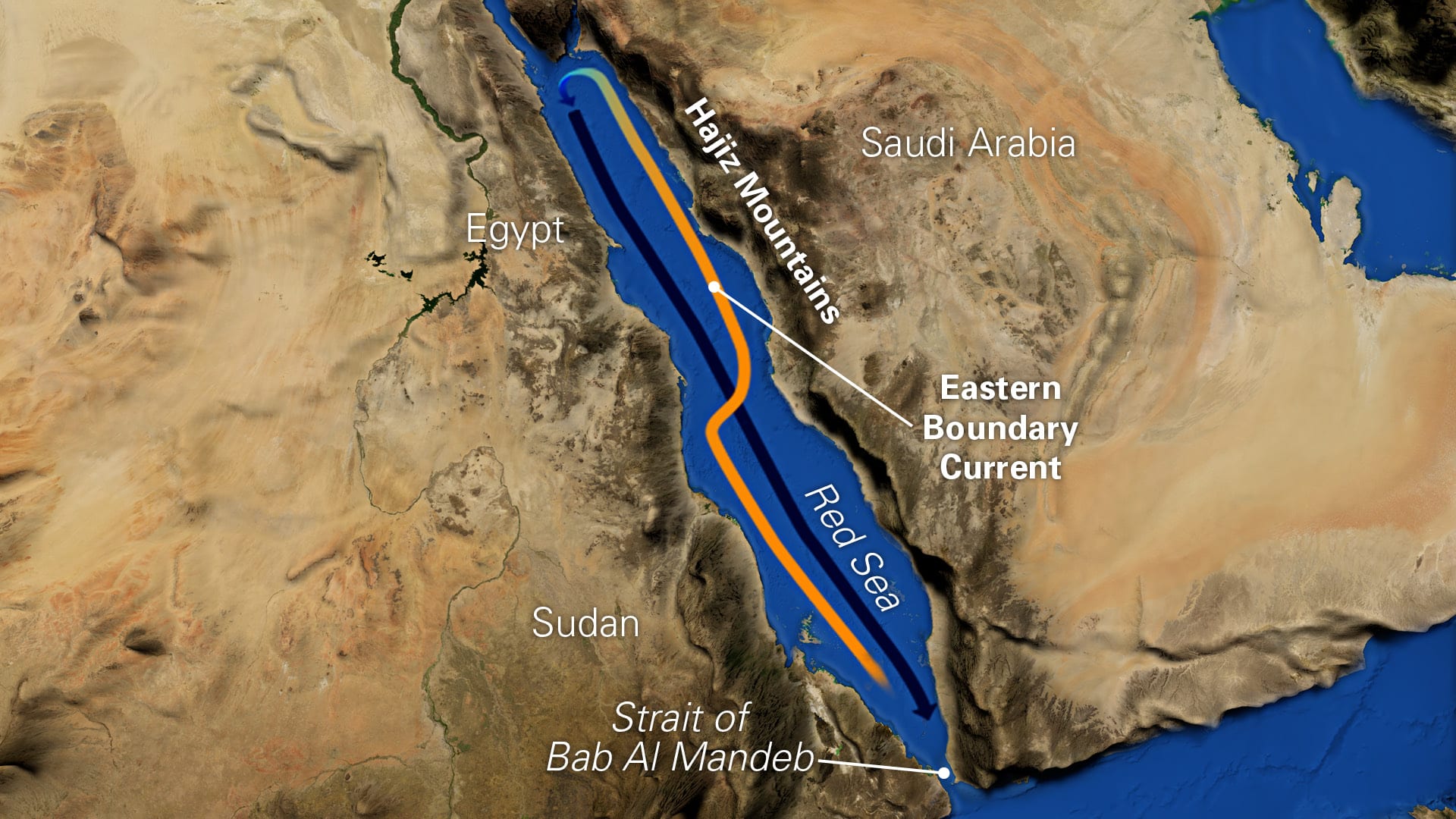
- 20 Dec 2023
Why is it in the News?
U.S. Defense Secretary Lloyd Austin on Tuesday announced the creation of a multinational operation to safeguard commerce in the Red Sea following a series of missile and drone attacks by Yemen's Iran-aligned Houthis.
Context:
- The U.S. Defense Secretary recently revealed the establishment of a multinational operation to protect commerce in the Red Sea.
- This decision comes in response to a string of missile and drone attacks by Yemen's Iran-aligned Houthis.
- The gravity of these attacks has prompted several shipping companies to instruct their vessels to remain stationary and avoid entering the Bab el-Mandeb Strait until the security concerns are addressed.
About the Red Sea:
- The Red Sea is a narrow waterway extending southeastward from Suez, Egypt, to the Bab el-Mandeb Strait.
- The Bab-el-Mandeb Strait links the Red Sea to the Gulf of Aden, providing a connection between the Mediterranean Sea and the Arabian Sea.
- Essentially, it is a narrow inland sea positioned between the Arabian Peninsula and Africa.
- The Red Sea acts as a boundary, separating the coastlines of Egypt, Sudan, and Eritrea from those of Saudi Arabia and Yemen.
- The Gulf of Aqaba, an extension to the northeast, stretches into southern Israel and southwestern Jordan.
- Significance: The Red Sea boasts some of the planet's hottest and saltiest seawater.
- It stands as one of the most heavily traversed water routes globally, facilitating maritime traffic between Europe and Asia.
- Relevance for India:
- Potential disruptions along this route could lead to a significant surge, up to 25-30%, in freight rates for Indian shipments bound for Europe and Africa.
- For India, the Red Sea trade route serves as the most direct path for ships traveling from Asia to Europe.
- India heavily depends on the Bab-el-Mandeb Strait for crucial aspects such as crude oil, LNG imports, and trade with regions in West Asia, Africa, and Europe.
- This passage is critical, accounting for 30% of global container traffic.
Who are the Houthi Rebels?
- The Houthis are a Shiite Muslim sect with roots that date back centuries in Yemen.
- Members of the religion are a minority in Yemen, which is predominantly Sunni Muslim, but they are a significant one, numbering in the hundreds of thousands and making up as much as a third of the overall population.
- Named after the Houthi tribe, they adhere to Zaydi Shia beliefs within Islam, emphasizing the lineage of Prophet Muhammad's family as the political leaders of the state.
- Also recognized as Ansar Allah, translating to "Supporters of God."
- Involvement in Yemen's Civil War: A major faction in Yemen's nearly decade-long civil war, starting in 2014 when Houthi insurgents seized control of Yemen's capital, Sanaa.
- By early 2015, Saudi Arabia, supported by other Gulf states and the U.S., conducted airstrikes against the Houthis, who have backing from Iran.
- Although a ceasefire was signed in 2022, it lapsed after six months, with the parties involved not returning to full-scale conflict.
- Houthi Attacks on Red Sea Ships:
- Iran-backed Houthi rebels from Yemen have targeted ships in the Red Sea in response to Israel's military actions in Gaza.
- The Houthis, supporting Hamas, declared on November 19 their intent to attack vessels they believe are traveling to and from Israel.
First Prehistoric Pictorial Cave Art Found in Madagascar Offers Clues Regarding Ancient Connections Between Borneo, Egypt (The Hindu)
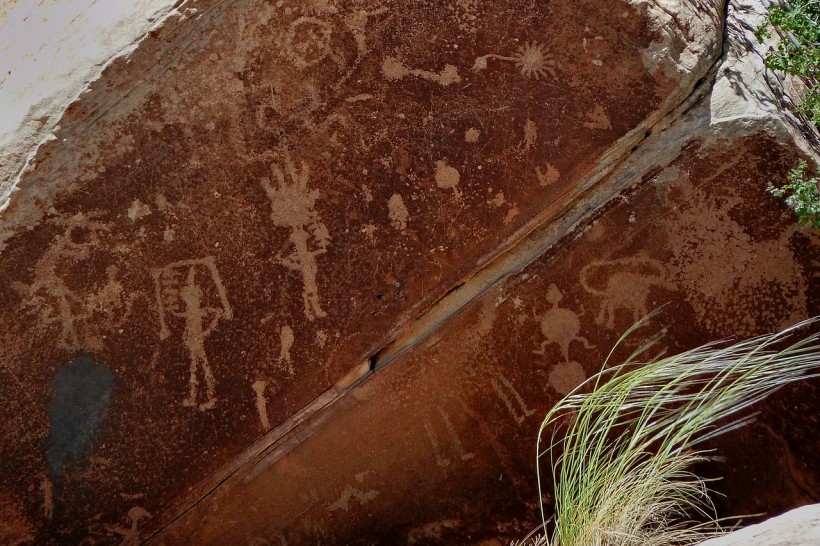
- 20 Dec 2023
Why is it in the News?
Recently, distinctive prehistoric rock art depictions were unearthed within the Andriamamelo Cave in western Madagascar.
Key Discoveries:
- Within this cave's truly pictorial art, human-like and animal-like figures depicting scenes from nature have been revealed.
- The remarkable findings unveiled surprising cultural connections, with some scenes directly linking to Egyptian religious motifs from the Ptolemaic period (300-30 BCE).
- Additionally, symbols and inscriptions on the cave walls indicated connections to the Ethiopian and Afro-Arab regions.
- Furthermore, the prevalent symbology and motifs echoed a cave art style from Borneo dating back two millennia.
- Notably, depictions within the cave may include three extinct animals of Madagascar — a giant sloth lemur, an elephant bird, and a giant tortoise.
- The potential connection to Egypt is suggested by eight significant images, including representations of a falcon (Horus), the bird-headed god Thoth, the ostrich goddess Ma`at, and two human-animal figures resembling Anubis, the ancient Egyptian god typically portrayed with a canine head.
About Andriamamelo Cave:
- The Andriamamelo Cave is situated in western Madagascar, nestled within the karstified limestone of the Paysage Harmonieux Protege de Beanka.
- This cave is a component of a vast karst region that encompasses the UNESCO World Heritage site, Parc National de Bemaraha, to the south, and the less-explored Antsingimavo karst area to the north.
Goa Liberation Day: Why India waited for 14 years after independence to move troops to Goa (Indian Express)
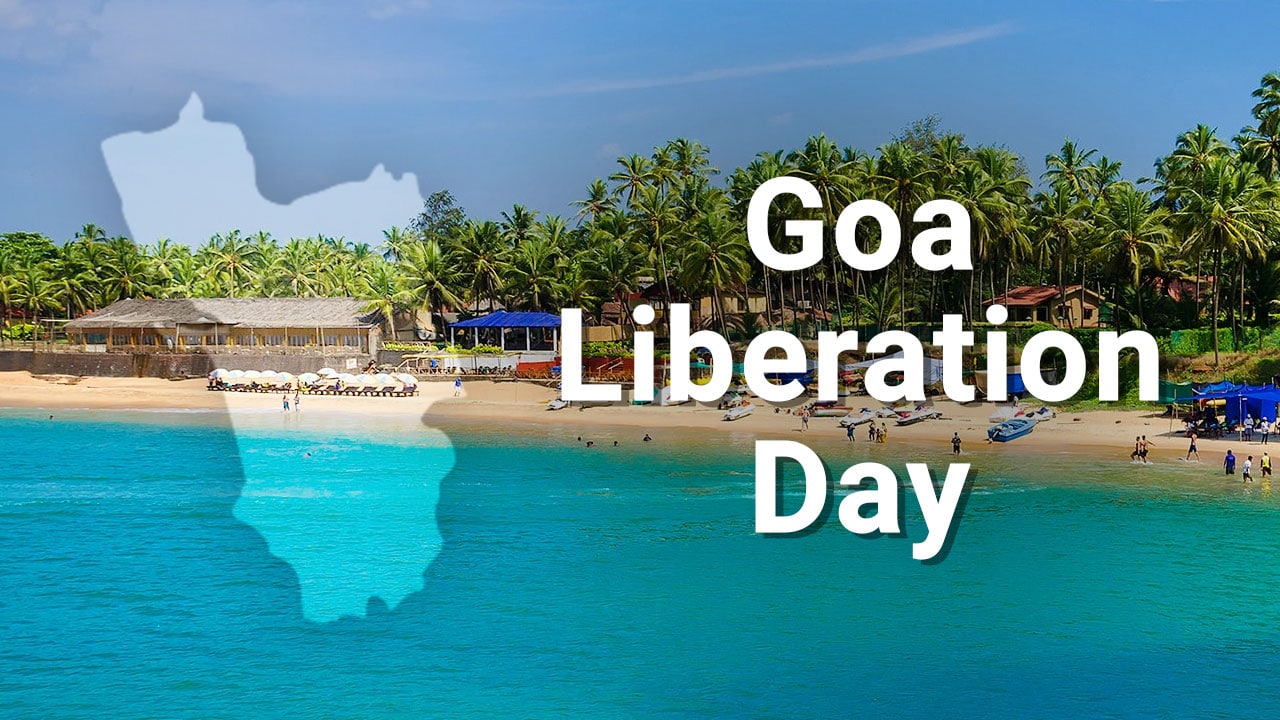
- 20 Dec 2023
Why is it in the News?
Goa Liberation Day is commemorated annually on December 19. In 2023, we observe the 62nd anniversary of the liberation of Goa.
Key Highlights:
- This day commemorates the liberation of Goa in 1961 by the Indian armed forces, ending 450 years of Portuguese rule.
- Portuguese colonization in India began in 1510, but by the late 19th century, their colonies were limited to Goa, Daman, Diu, Dadra, Nagar Haveli, and Anjediva Island.
- After India's independence in 1947, attempts to persuade Portugal to cede their territories were unsuccessful.
- The Goa liberation movement gained momentum from small-scale revolts, peaking between 1940 and 1960.
- In 1961, diplomatic efforts failed and Operation Vijay was executed, leading to the annexation of Daman, Diu, and Goa to the Indian mainland on December 19.
About Operation Vijay:
- Operation Vijay, a 36-hour military initiative initiated on December 18, 1961, and concluded on December 19, 1961, aimed at liberating the Portuguese territories of Goa, Daman, and Diu.
- This marked a significant milestone as possibly the first tri-service operation by the Indian armed forces.
- The Indian Air Force executed bombings on the Portuguese airbase at Dabolim, complementing the army's advancement from the north and east into Goa.
- Simultaneously, the Indian Navy played a crucial role in preventing hostile actions by Portuguese warships, securing access to Mormugao harbor, and establishing control over the Anjadip Island off the coast of Karwar.
- By the evening of December 19, 1961, Portuguese Governor General Vassalo De Silva signed the surrender document as the Indian armed forces, led by the army with support from the air force and navy, had effectively outnumbered and outgunned the Portuguese forces.
Granting Statehood to Goa after Liberation:
- Following its liberation, Goa came under the administration of the Indian government, becoming a constituent of the Indian Union as the Union Territory of Goa, Daman, and Diu.
- However, in 1967, a plebiscite was conducted to decide on the potential merger of the state with Maharashtra.
- The majority of Goans voted against the merger, leading to the continuation of its status as a Union Territory.
- This arrangement persisted until 1987 when Goa was accorded statehood, emerging as the 25th state of India.
- Meanwhile, Daman and Diu retained their status as a Union Territory.
INDUS-X Initiative (Financial Express)
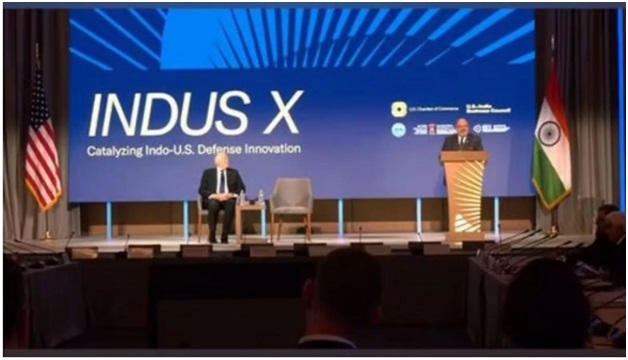
- 09 Nov 2023
Why in the News?
On the eve of the India-US 2+2 Ministerial Dialogue, the inaugural INDUS-X Investors Meet was held in New Delhi.
What is the INDUS X Initiative?
- The INDUS-X initiative, also known as the India-U.S. Defense Acceleration Ecosystem, was launched in June 2023 during the State Visit of the Prime Minister of India to the United States.
- Its primary objective is to expand the strategic technology partnership and defense industrial cooperation between the governments, businesses, and academic institutions of India and the United States.
- INDUS-X is envisioned as a defense innovation bridge, encompassing Joint Challenges, a Joint Innovation Fund, academia engagement, industry-startup connections, private sector investment in defense projects, mentorship by experts, and niche technology projects, among other initiatives.
- This collaborative effort holds the promise of ushering in a new era of defense innovation and cooperation between India and the United States.
About INDUS X Investors Meet:
- The first-ever INDUS-X Investors Event brought all the stakeholders including Startups, Investors, Incubators, and Industry from both sides under one roof to discuss the collaborative agendas and opportunities thereon.
- The event also had focused panel discussions with a select audience of 50 thought leaders, including start-ups, investors, government officials, and business leaders from the defence industry.
- The panel discussed ‘Investment Opportunities in the Defence Sector’, elaborating upon establishing a sustainable commercial foundation for defence collaboration and co-production.
- The INDUS-X Educational Series (Gurukul) was also launched during the event.
- The Gurukul initiative is aimed at helping innovators and startups to navigate the defence eco-system of the US and India.
'World's Largest Meditation Centre': PM Modi inaugurates Swarved Mahamandir in Varanasi (ET)
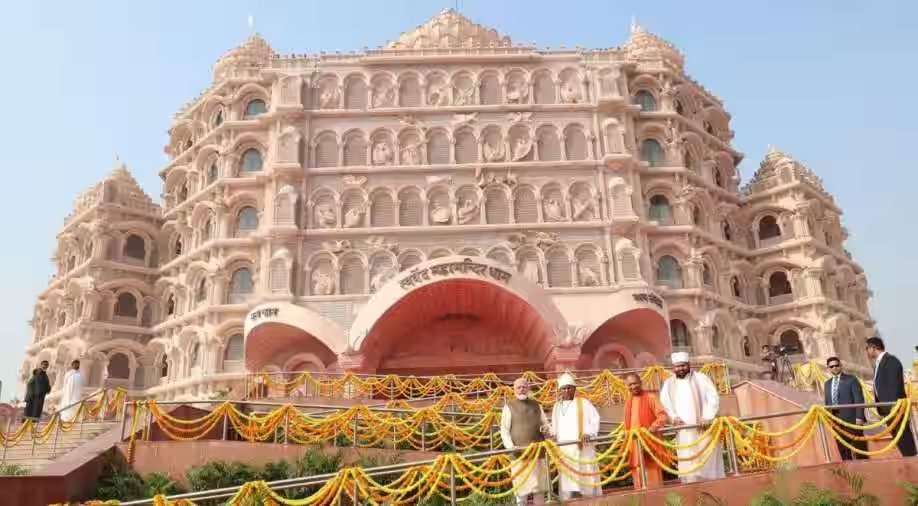
- 19 Dec 2023
Why is it in the News?
Prime Minister Narendra Modi inaugurated the world’s largest meditation centre, Swarved Mahamandir, in Varanasi on December 18.
About the Swarved Mahamandir:
- The Swarved Mahamandir stands as the world's largest meditation centre, accommodating 20,000 individuals in collective contemplation.
- Situated in Varanasi, Uttar Pradesh, this spiritual haven aspires to cast a luminous spiritual aura, enveloping the globe in a state of tranquil attentiveness.
- Named after the Swarved, a profound spiritual text penned by Sadguru Shri Sadafal Deoji Maharaj, the visionary behind Vihangam Yoga and an enduring yogi, the temple serves as a bastion for disseminating Swarveda teachings.
- Emphasizing Brahma Vidya, a profound body of knowledge, it guides spiritual seekers toward sustaining an unwavering equilibrium of peace and happiness.
- Architecturally, the Mahamandir is an imposing seven-floor superstructure, adorned with a captivating design featuring 125-petal lotus domes.
- Crafted from teakwood, the intricate carvings embellishing the ceiling and doors add to its allure.
- Pink sandstone envelops the temple walls, complemented by an enchanting garden featuring medicinal herbs.
- Imprinted on the Mahamandir's walls are verses from the Swarveda, serving as an enduring testament to the spiritual wisdom that resonates within its sacred confines.
What is Vihangam Yoga?
- Vihangam Yoga, an indigenous form of Yoga and meditation, was established by Sadguru Sadafal Deo Ji Maharaj in 1924.
- The nomenclature of this practice is derived from two foundational words: "Vihag," signifying bird, and "Yog," denoting union.
- The name encapsulates the profound concept of a bird ascending from the terrestrial realm, soaring high and unbounded in the sky.
- This symbolism mirrors the ultimate aim of Vihangam Yoga – the liberation of the soul from attachments to the material world, allowing it to recognize and embrace its innate, unshackled essence.
- Only through this liberation can an individual's consciousness seamlessly merge with the universal consciousness, often referred to as the Supreme Being, leading to a state of enduring tranquillity and bliss.
Telecommunications Bill, 2023: The changes it seeks in the telecom sector, why some have raised concerns (Indian Express)
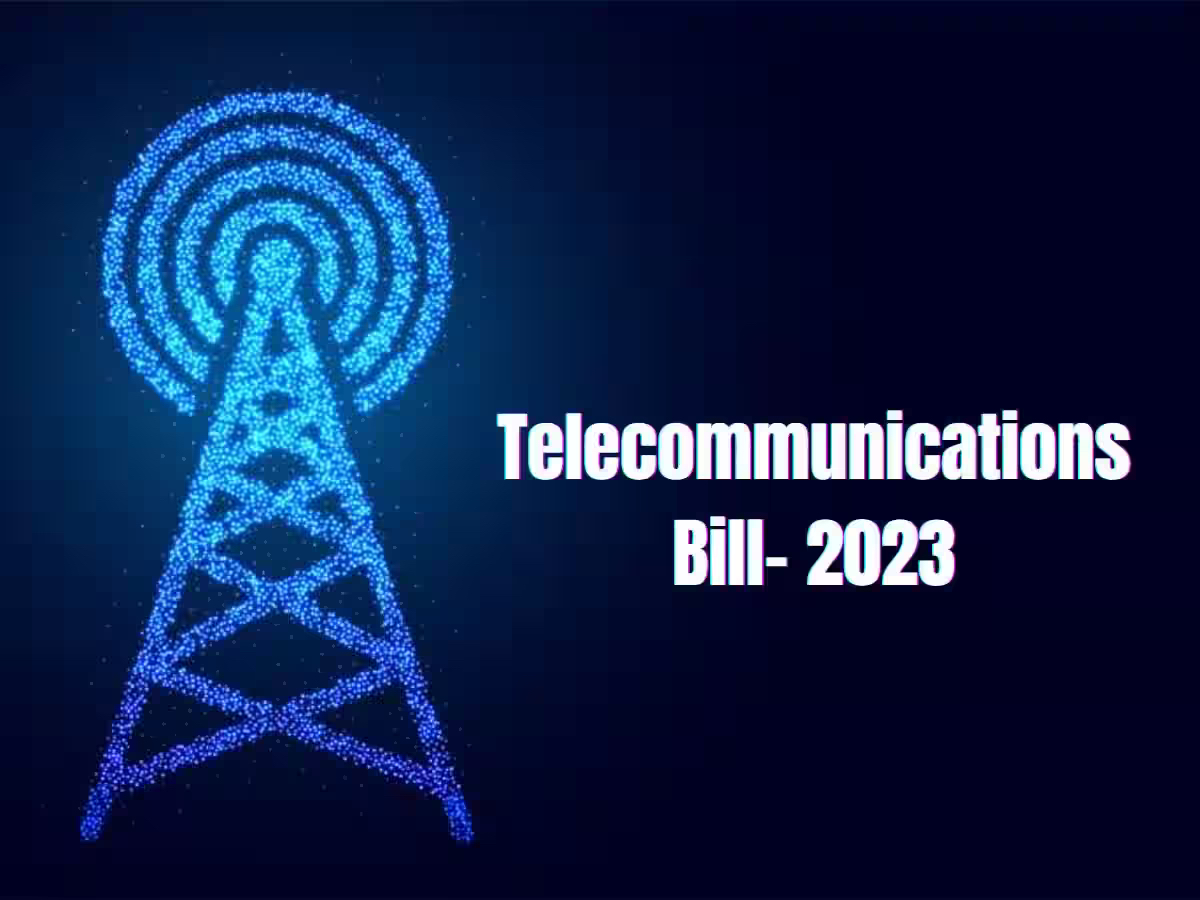
- 19 Dec 2023
Why is it in the News?
The Telecommunications Bill, 2023, was introduced in the Lok Sabha on Monday. The bill allows the government to take over, manage or suspend telecommunication services or a network over national security.
Key Features of the Telecommunications Bill, 2023
- Repeal of Existing Laws: The bill annuls the Indian Telegraph Act, 1885, the Indian Wireless Telegraphy Act, 1933, and the Telegraph Wires (Unlawful Possession) Act, 1950, while introducing amendments to the Telecom Regulatory Authority of India (TRAI) Act, 1997.
- Authorization for Telecom Activities: Central government approval is mandatory for telecommunication services, network establishment, operation, maintenance, expansion, or possession of radio equipment.
- Existing licenses remain valid for their granted period or five years if unspecified.
- Spectrum Assignment: Spectrum allocation, except for specific purposes, will be through auction.
- Exceptions include national security, disaster management, and services by state-owned entities.
- Interception and Search Powers: Messages may be intercepted, monitored, or blocked for public safety, emergencies, or specified grounds like state security and prevention of offences.
- Government's Extraordinary Powers: The government can take temporary possession of telecom infrastructure during public emergencies, with the authority to suspend telecom services.
- Authorized officers may search for unauthorized equipment.
- Standards Specification Authority: The central government can prescribe standards for telecom equipment, infrastructure, networks, and services.
- Right of Way for Telecom Infrastructure: Facility providers can seek a right of way over public or private property for telecom infrastructure on a non-discriminatory basis.
- User Protection Measures: The government may implement measures to protect users, including consent for specific messages, creation of Do Not Disturb registers, and a mechanism for reporting malware.
- TRAI Appointments and Experience Requirements: Amendments allow individuals with at least 30 years of professional experience to serve as TRAI chairperson and those with at least 25 years of membership.
- Digital Bharat Nidhi: The Universal Service Obligation Fund (USOF) is renamed Digital Bharat Nidhi, allowing its use for research and development (R&D).
- Adjudication Process: An adjudicating officer, of the rank of joint secretary and above, will handle inquiries and orders against civil offences.
- Appeals can be made to the Designated Appeals Committee and further to TDSAT.
- Offences and Penalties: The Bill outlines criminal and civil offences, imposing penalties and imprisonment for unauthorized telecom services, network access, and equipment possession.
- Civil penalties apply for breaches of authorization terms.
What are the Reasons behind the introduction of the Telecommunications Bill, of 2023?
- The telecommunications sector plays a pivotal role in fostering economic and social progress, serving as the conduit for digital services.
- Given its significance, the security of our nation relies substantially on the robustness of telecommunication networks.
- Hence, there is an imperative to establish a legal and regulatory structure that prioritizes the security and resilience of telecommunication networks, fostering a digitally inclusive trajectory for growth.
- The dynamic evolution of telecommunication, its patterns of use, and underlying technologies in recent years underscores the necessity for legislation that aligns with the evolving needs of our society.
Mines Ministry to Launch National Geoscience Data Repository Portal To Foster Innovation in Exploration (PIB)
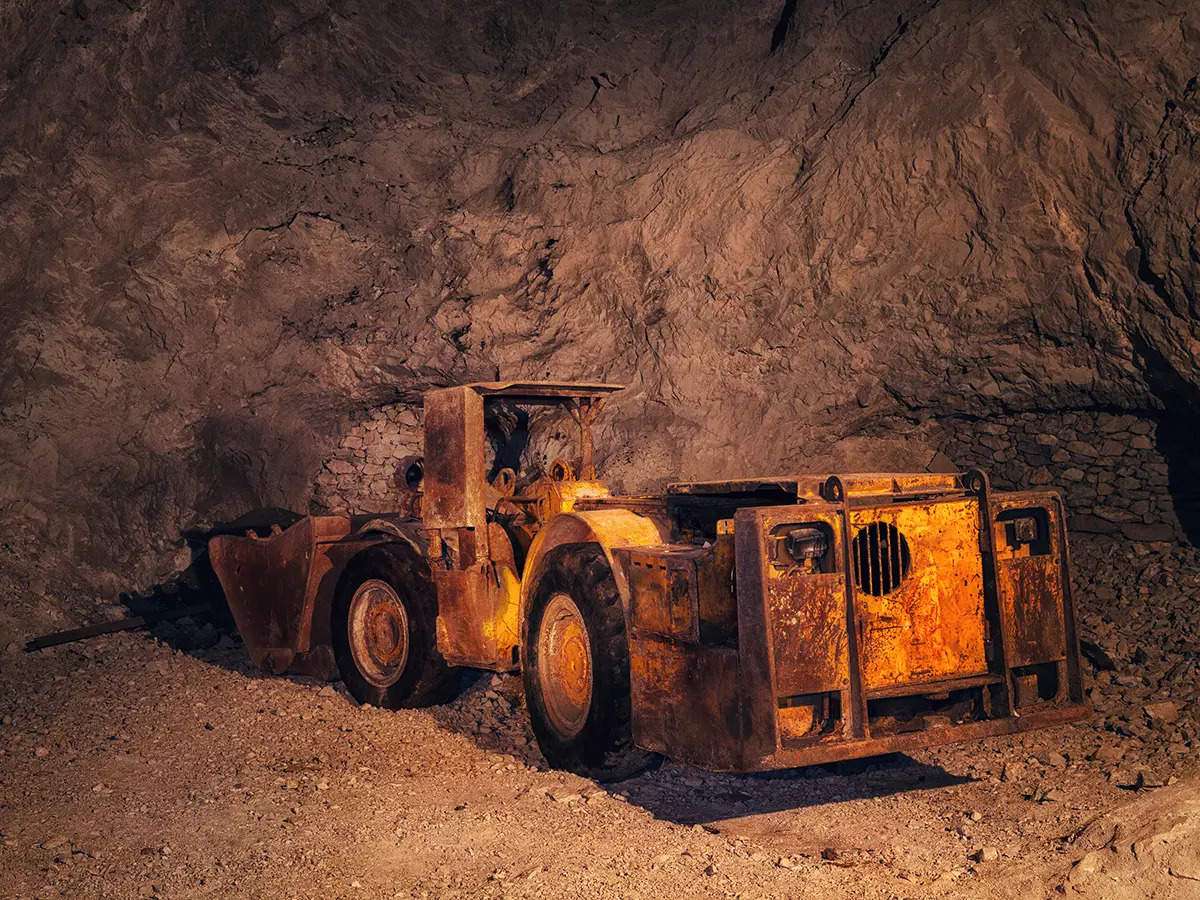
- 19 Dec 2023
Why is it in the News?
Ministry of Mines is to launch the National Geoscience Data Repository (NGDR) Portal on 19th December 2023 in a ceremony in New Delhi.
What is the National Geoscience Data Repository Portal?
- This extensive online platform facilitates the retrieval, exchange, and examination of geospatial information nationwide.
- Spearheaded by the Geological Survey of India (GSI) and the Bhaskaracharya Institute of Space Applications and Geoinformatics (BISAG-N), the NGDR initiative marks a notable advancement in democratizing crucial geoscience data.
- It empowers stakeholders in various industries and academia by providing unparalleled access to invaluable resources.
About the Geological Survey of India (GSI):
- The Geological Survey of India (GSI) originated in 1851 with the primary objective of identifying coal deposits for the Railways.
- Since its inception, GSI has transformed into a repository of geo-scientific information, achieving international recognition for its contributions.
- The organization is dedicated to creating and updating national geoscientific data, conducting mineral resource assessments, and providing impartial geological expertise crucial for policy decisions, commercial ventures, and socio-economic needs.
- GSI focuses on comprehensive documentation of geological processes, employing state-of-the-art techniques in geological, geophysical, and geochemical surveys.
- As an attached office of the Ministry of Mines, GSI operates from its headquarters in Kolkata, with six regional offices in Lucknow, Jaipur, Nagpur, Hyderabad, Shillong, and Kolkata, along with state unit offices across India.
About BISAG (N):
- Bhaskaracharya National Institute for Space Applications and Geo-informatics (BISAG-N) operates as an Autonomous Scientific Society registered under the Societies Registration Act, 1860, falling under the MeitY, Government of India.
- Its multifaceted mission encompasses technology development and management, research and development, fostering national and international collaboration, capacity building, and facilitating technology transfer and entrepreneurship development in the realm of geospatial technology.
- BISAG-N has played a pivotal role in implementing GIS and geospatial technologies for major ministries and nearly all states, integrating diverse technological domains such as geo-spatial science, information science systems, and mathematics science systems.
- The institute operates as a state agency under the Department of Science and Technology, Government of Gujarat, situated in Gandhinagar, Gujarat.
MoEFCC has launched the Indian Forest & Wood Certification Scheme to promote sustainable forest management and agroforestry practices across the country (Indian Express)
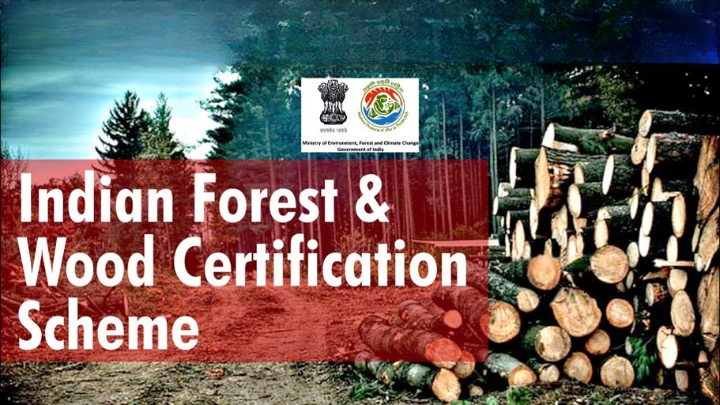
- 19 Dec 2023
Why is it in the News?
Amid rising international concerns about deforestation and illicit trade in timber, the government has launched its own “national” forest certification scheme to validate entities that adhere to sustainable practices in the management of forests and their products.
About the Indian Forest & Wood Certification Scheme (IFWCS):
- The Indian Forest & Wood Certification Scheme (IFWCS) serves as the national forest certification initiative, focusing on fostering sustainable forest management and the sustainable utilization of Trees outside Forests (TOF) across India.
- Voluntary Participation: The scheme provides a voluntary third-party certification mechanism to encourage agroforestry practices within the country.
- Alternatives to Foreign Certifications: IFWCS presents an indigenous alternative to foreign certification agencies that have been prevalent in the Indian market for the past two decades.
- Applicability: The certification applies nationwide, covering both forest areas and TOF plantations on government, private, agroforestry, and other lands.
- It encompasses both timber and non-timber forest produce (NTFP).
- Necessity: With major export markets like Europe and the United States imposing stricter rules on forest product imports due to deforestation concerns related to climate change, IFWCS can provide market incentives for entities practising responsible forest management.
- Significance: The scheme aims to enhance trust, transparency, and international acceptability of Indian forest-based products.
- It is especially beneficial for state forest departments, individual farmers, or Farmer Producer Organizations engaged in agroforestry.
- Compliance and Legal Status: While the certification may gain recognition from various regulatory authorities, it does not serve as legal advice on compliance with specific laws, regulations, or requirements.
- Foundation: Forest Management certification relies on the Indian Forest Management Standard, a crucial component of the National Working Plan Code 2023, introduced this year.
- The Indian Forest and Wood Certification Council, acting as a multi-stakeholder advisory body, will supervise the scheme.
- The council comprises members from esteemed institutions like the Indian Council of Forestry Research and Education, Forest Survey of India, and the Indian Institute of Forest Management, along with representatives from relevant ministries.
- Implementation: The Indian Institute of Forest Management in Bhopal will serve as the scheme's operating agency.
- Certification bodies conducting independent audits will be accredited by the National Accreditation Board for Certification Bodies under the Quality Council of India.
Management of Forests in India:
- The administration of forests in India aligns with individual working plans specific to each forest area.
- Recently, these plans have undergone revisions incorporating the newly formulated Indian Forest Management Standards.
- Comprising 8 criteria, 69 indicators, and 254 verifiers, these standards are obligatory for implementation across all forest divisions nationwide.
- While forest divisions are not compelled to obtain certification, adhering to these standards renders them eligible.
- The decision to pursue certification is contingent upon specific requirements and considerations.
Saint Lucia’s Tax Inspectors without Borders (TIWB) programme launched in partnership with India (ET)
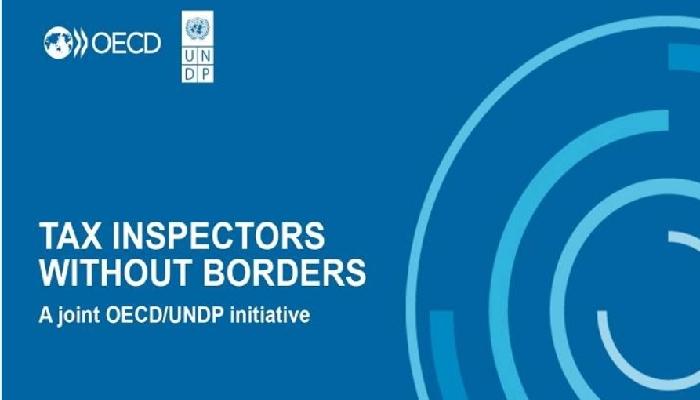
- 16 Dec 2023
Why is it in the News?
India will help Saint Lucia in strengthening its tax administration by transferring technical knowledge and skills to its tax administration, and sharing best practices under the ‘Tax Inspectors Without Borders (TIWB) programme’.
Key Highlights:
- India has been chosen as the Partner Administration and will provide Tax Experts for this programme.
- This programme is expected to be of 12-18 months’ duration in which India, in collaboration with the TIWB Secretariat and support of the UNDP Country Office, Barbados and the Eastern Caribbean, aims to aid Saint Lucia in strengthening its tax administration by transferring technical knowledge and skills to its tax administration, and through sharing of best practices.
- The focus of the programme will be on the effective use of automatic exchange of information under the Common Reporting Standard (CRS) framework.
What is Tax Inspectors without Borders programme?
- Tax Inspectors Without Borders (TIWB) is a joint initiative of the Organisation for Economic Co-operation and Development (OECD) and the United Nations Development Programme (UNDP).
- It is designed to support developing countries to build tax audit capacity.
- TIWB facilitates well-targeted, specialised tax audit assistance in developing countries around the world.
- Under TIWB, tax audit experts work alongside local officials of developing country tax administrations on tax audit and tax audit-related issues.
- TIWB aims to transfer technical know-how and skills to developing countries’ tax auditors, as well as share general audit practices.
- The host administrations of developing countries are the lead partners in TIWB programmes, clearly specifying their needs and scope of work.
- A dedicated central unit (TIWB Secretariat) jointly managed by OECD and UNDP operates as a clearing house to match the demand for auditing assistance with appropriate expertise.
- TIWB is a capacity-building programme.
Project Dolphin (The Hindu)
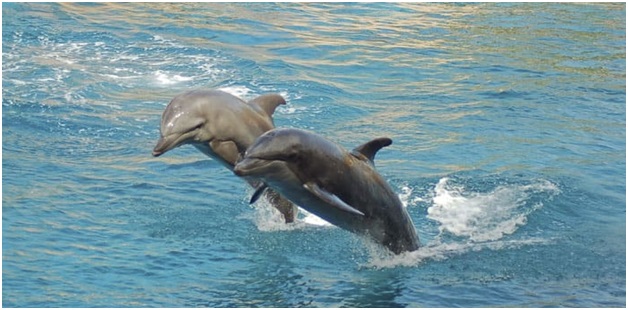
- 08 Nov 2023
Why in the News?
In an effort to conserve dolphins and their habitat, the Tamil Nadu government has issued orders to implement Project Dolphin under the Union government’s Integrated Development of Wildlife Habitats scheme.
About Project Dolphin:
- Project Dolphin is a national conservation initiative approved in 2019 during the first meeting of the Prime Minister-led National Ganga Council (NGC) and launched in 2021 to safeguard both riverine and oceanic dolphin species.
- It's part of the larger Arth Ganga program, which is a government initiative.
- It is modeled after Project Tiger, the successful conservation program that has played a significant role in the resurgence of tigers in India.
- The Project Dolphin will strengthen the marine ecology and overall health of the marine Environment and will be implemented at a cost of Rs.8.13 crore.
- The major habitats of the dolphins are found in the Gulf of Mannar Biosphere Reserve (Tamil Nadu).
- The Ministry of Environment, Forests, and Climate Change is responsible for implementing Project Dolphin.
- The main goal is to ensure the long-term survival of these dolphins and, by extension, the overall health of the river's aquatic life.
- The National Mission for Clean Ganga (NMCG) started a dolphin conservation program in 2016 to work towards this important mission.
- Dolphins play an important role in keeping the marine environment in balance.
- Dolphins worldwide face various natural and human-induced threats which include hunting, entanglement in fishing nets, overfishing, climate change, ship strikes, tourism activities, toxic contamination, noise pollution, oil and gas development, and habitat degradation.
- The conservation of dolphins and their aquatic habitat through the use of modern technology by engaging with fishermen and other ocean-dependent populations is proposed under the project.
- The project will focus on key activities including strengthening of protection activities through better patrolling anti-poaching activities and strengthening of the surveillance and patrolling teams with modern equipment and technology;
- Rescue and rehabilitation activities through the strengthening of veterinary services, patrolling and training, etc;
- Dolphin habitat improvement through the restoration of coastal eco-system like mangroves, corals, sea grass, etc;
- Removal of ghost nets and reduction of pollution in coastal areas;
- enhancing awareness through the celebration of “National Dolphin Day”
Euclid Mission (NASA)

- 07 Nov 2023
Why in the News?
The Euclid mission, which will investigate the mysteries of dark matter and dark energy, released its first five science images recently.
About Euclid Mission:
- Euclid is a European mission, built and operated by European Space Agency (ESA), with contributions from NASA.
- Euclid is designed to give important new insights into the "dark side" of the universe -- namely dark matter and dark energy, both thought to be key components of our cosmos.
- It was launched from Cape Canaveral, Florida, (USA) on 1 July 2023 and the launch vehicle used was ‘SpaceX Falcon 9’.
- The mission derives its name from Euclid of Alexandria, an ancient Greek mathematician from around 300 BC, who laid the foundations of geometry.
- Euclid Mission Objective: The primary goal of the Euclid mission is to create a three-dimensional map of the universe, with time as the third dimension.
- This will be achieved by observing billions of galaxies, extending up to 10 billion light-years away, and covering over a third of the celestial sphere.
- Euclid will explore how the Universe has expanded and how structure has formed over cosmic history, revealing more about the role of gravity and the nature of dark energy and dark matter.
- The Euclid Consortium – consisting of more than 2,000 scientists from 300 institutes in 13 European countries, the U.S., Canada, and Japan – is responsible for providing the scientific instruments and scientific data analysis.
- NASA provided the detectors of the Near-Infrared Spectrometer and Photometer, NISP.
- Euclid is a medium-class mission in ESA’s Cosmic Vision Programme.
World Local Production Forum (WLPF) (PIB)
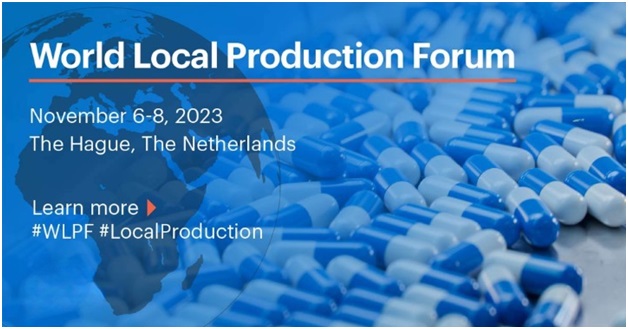
- 07 Nov 2023
Why in the News?
The Indian delegation led by Shri Bhagwant Khuba, Union Minister of State for Chemicals and Fertilizers participated in the Second World Local Production Forum (WLPF) held in Hague, Netherlands.
About the World Local Production Forum (WLPF):
- The World Local Production Forum (WLPF) is an initiative by the World Health Organization (WHO).
- The inaugural WLPF took place virtually in 2021.
- Main Objective: The core aim of this forum is to enhance access to essential medicines and other health technologies.
- Role and Function: The WLPF serves as a regular platform for Member States and the global community to collaboratively develop strategies, mobilize collective efforts, and establish partnerships.
- These actions are directed towards promoting sustainable local production, ensuring timely and equitable access to high-quality health products.
- Secretariat: The Local Production and Assistance (LPA) Unit at the WLPF is responsible for overseeing the forum's activities.
- Second WLPF Goals: The second WLPF has several key objectives:
- To create a global platform for discussions addressing the primary challenges related to local production and technology transfer.
- To explore opportunities and mechanisms for overcoming obstacles in this regard.
- To champion sustainable local production capabilities that lead to improved access to safe, effective, and high-quality health products and technologies.
Graded Response Action Plan (GRAP) (Indian Express)
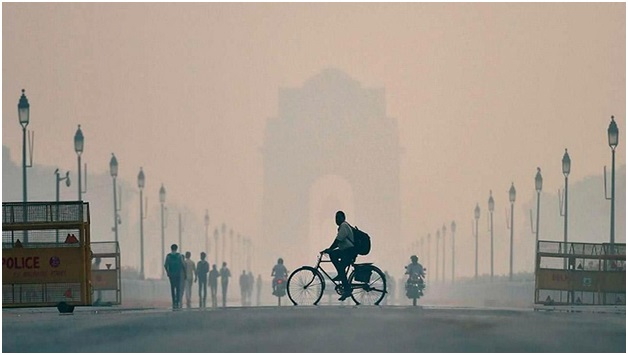
- 07 Nov 2023
Why in the News?
As the Air Quality Index (AQI) in the National Capital Region reaches 'severe' levels, the Commission for Air Quality Management (CAQM) activated Stage 4 measures from the Graded Response Action Plan (GRAP) recently.
What is the Graded Response Action Plan (GRAP)?
- GRAP is a set of emergency measures that kick in to prevent further deterioration of air quality once it reaches a certain threshold in the Delhi-NCR region.
- Approved in 2016 after the Supreme Court’s order in M. C. Mehta vs. Union of India (2016) and notified in 2017.
- The Supreme Court-appointed Environment Pollution (Prevention & Control) Authority (EPCA) to implement GRAP measures till 2020.
- However, the EPCA was dissolved and replaced by the Commission for Air Quality Management (CAQM) in 2020.
- From 2021, the Commission for Air Quality Management (CAQM), a statutory body responsible for implementing GRAP.
- CAQM relies on air quality and meteorological forecasts by the India Meteorological Department (IMD) and the Indian Institute of Tropical Meteorology (IITM).
- GRAP is incremental in nature and thus, when the air quality dips from ‘poor’ to ‘very poor,’ measures listed under both sections have to be followed.
- Stage 1 of GRAP is activated when the AQI is in the ‘poor’ category (201 to 300),
- Stage 2 is when it’s in the ‘Very poor’ category (301-400),
- Stage 3 is when the AQI is the ‘Severe’ category (401-450) and finally
- Stage 4 is when it rises to the ‘Severe +’ category (more than 450).
Guindy National Park (The Hindu)
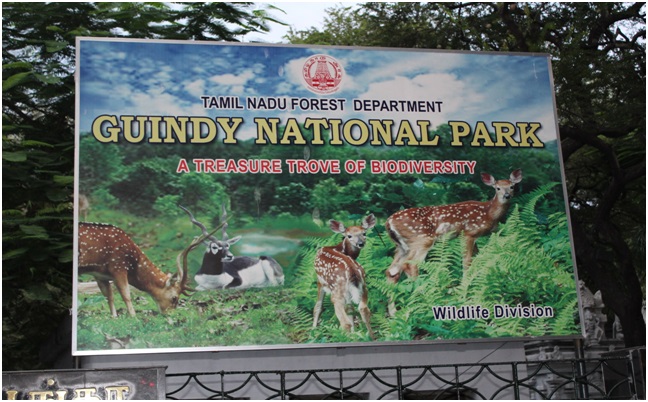
- 06 Nov 2023
Why in the News?
Guindy National Park, packed with blackbucks and birds, is one of the few national parks located in an Indian metropolis.
About the Guindy National Park:
- Guindy National Park is a protected area, located in the heart of Chennai’s metropolitan area of Tamil Nadu.
- It's the 8th smallest national park in India, covering an area of 2.70 square kilometers (1.04 square miles).
- This national park is unique because it is situated within the city of Chennai and is an extension of the grounds around Raj Bhavan, which was formerly known as the 'Guindy Lodge' and serves as the official residence of the governor of Tamil Nadu.
- Guindy National Park plays a crucial role in both ex-situ and in-situ conservation efforts.
- It provides a habitat for various wildlife species, including 400 blackbucks, 2,000 spotted deer, 24 jackals, numerous snakes, geckos, tortoises, and over 130 bird species.
- Flora: Guindy National Park features a diverse range of vegetation, including dry evergreen scrub and thorn forests, grasslands, and water bodies.
- Fauna: The park is home to 14 mammal species, over 60 species of butterflies and spiders each, and a wide variety of invertebrates such as grasshoppers, ants, termites, crabs, snails, slugs, scorpions, mites, earthworms, and millipedes.
National Mineral Development Corporation (NMDC) (PIB)

- 06 Nov 2023
Why in the News?
Recently, Shri Nagendra Nath Sinha, Secretary, Ministry of Steel, unveiled a groundbreaking ceremony for the Mining operations at Mount Celia Gold Project located in Western Australia.
About National Mineral Development Corporation (NMDC):
- National Mineral Development Corporation (NMDC), a Navratna Public Sector Enterprise under the Ministry of Steel, Government of India.
- It is the single largest producer of iron ore in India.
- It owns and operates highly mechanized iron ore mines in Chhattisgarh and Karnataka.
- The registered office is situated in Hyderabad, Telangana.
- NMDC is considered to be one of the low-cost producers of iron ore in the world.
- It also operates the only mechanized diamond mine in India at Panna, Madhya Pradesh.
- The company is involved in the exploration of a variety of minerals, including iron ore, copper, rock phosphate, limestone, dolomite, gypsum, bentonite, magnesite, diamond, tin, tungsten, graphite, and beach sands.
- Most of the high-quality iron ore produced by NMDC is sold to the Indian domestic steel industry through long-term contracts.
Kaleshwaram Lift Irrigation Project (KLIP) (HT)
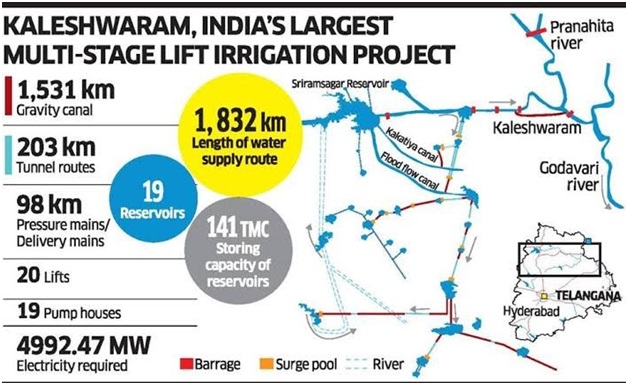
- 04 Nov 2023
Why in the News?
A controversy over alleged engineering lapses in the ?1 lakh crore Kaleshwaram lift irrigation project on the Godavari river triggered an electoral slugfest in poll-bound Telangana.
About Kaleshwaram Lift Irrigation Project (KLIP):
- Location: The Kaleshwaram Lift Irrigation Project (KLIP) is situated at Kaleshwaram village in Telangana, along the Godavari River.
- Confluence Point: It is located at the confluence of the Pranhita and Godavari Rivers.
- At this confluence, the Wardha, Painganga, and Wainganga rivers also meet, forming the seventh-largest drainage basin in the subcontinent.
- Originally called Pranahita-Chevella project in erstwhile Andhra Pradesh, it was redesigned, extended and renamed as Kaleshwaram project in Telangana in 2014.
- KLIP is known as the world's largest multi-stage and multi-purpose lift irrigation project.
- A significant feature of KLIP includes a series of underground and surface water pumping stations, claimed to be the world's largest of their kind.
- This lift irrigation system stretches over 300 kilometers and moves large volumes of water from rivers or reservoirs to be distributed through channels and additional reservoirs before reaching the next stations.
- Objective: The project's goal is to provide water to 45 lakh acres of land in Telangana for irrigation and drinking water.
- KLIP started in 2016 and will utilise approximately 283 thousand million cubic feet (TMC) of water from the Godavari River to serve 13 districts in Telangana.
Adaptation Gap Report 2023 (DownToEarth)
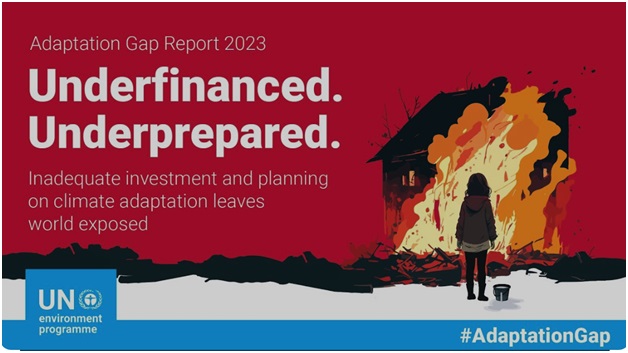
- 04 Nov 2023
Why in the News?
The Adaptation Gap Report states that funding for adaptation measures in developing nations has been declining and is insufficient of what is required.
About the Adaptation Gap Report:
- The Adaptation Gap Report (AGR) is an annual United Nation Enviroment Programme (UNEP) flagship publication.
- The report's primary objective is to inform the negotiators of the United Nations Framework Convention on Climate Change (UNFCCC) Member States, and the broader UNFCCC constituency, about the status and trends within climate adaptation at global and regional levels.
- AGR offers science-based recommendations to policymakers and decision-makers to enhance climate adaptation efforts in key climate-sensitive sectors.
- Since 2014, UNEP has been producing these assessments to support effective adaptation responses aligned with the UNFCCC's temperature and adaptation goals.
- The "adaptation gap" refers to the difference between actual adaptation efforts and the goals set by society, influenced by factors like climate change impacts, available resources, and competing priorities.
Key Findings of the Report:
- Adaptation costs are expected to rise significantly by 2050, especially in high-warming scenarios.
- The financial needs for adaptation are 10-18 times higher than the current international public adaptation fund flows.
- Urgent action is required to reduce greenhouse gas emissions and enhance adaptation efforts to protect vulnerable populations worldwide.
- In 2021, funding from developed countries to support adaptation projects in developing countries decreased by 15% compared to previous years.
- The report suggests seven strategies to bridge the adaptation gap, including increasing international financial support and mobilizing domestic resources.
- It also calls for a reform of the global financial system to facilitate easier access to climate-related funding from multilateral agencies such as the World Bank or the IMF.
ENCORE (NewsOnAIR)
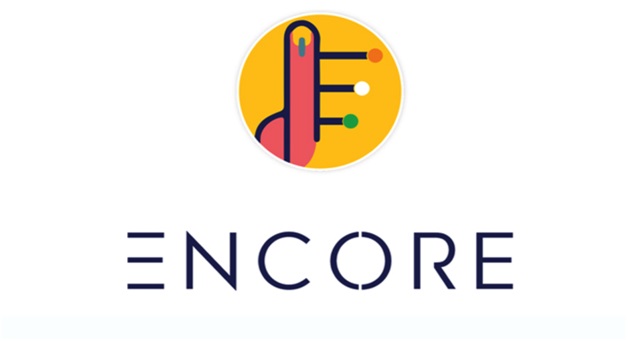
- 03 Nov 2023
Why in the News?
Recently, the Election Commission of India (ECI) has developed in-house software named ‘ENCORE’ designed for efficient candidate and election management.
About ‘ENCORE’:
- The Election Commission of India has designed in-house software for complete Candidate and election management through ‘ENCORE’ which stands for Enabling Communications on Real-time Environment.
- This provides a seamless facility for Returning Officers to process candidate nomination, affidavit, Voter turnout, counting, results and data management.
- The ENCORE counting application is an end-to-end application for returning officers to digitize the votes polled, tabulate the round-wise data and then take out various statutory reports of counting.
- An additional application, the ENCORE Scrutiny Application, allows Returning Officers to scrutinize online nominations submitted by candidates.
- This process involves verifying and marking the status of nominations as Accepted, Rejected, or Withdrawn, facilitating the creation of the final list of contesting candidates and symbol assignment.
- The ECI offers an online portal for candidate nomination and affidavit submission.
- Candidates can create accounts, complete nomination forms, submit security deposits, and plan their visits to the Returning Officer through this portal.
- The Candidate Affidavit portal is designed to display information about a candidate's financial assets and liabilities, offering transparency in candidates' financial disclosures.
- The ENCORE Nodal App serves as a platform for various government departments, including fire, education, police, environment, and CPWD, to issue 'no objection' certificates.
- These certificates are required before granting permission for political parties or candidates to hold rallies, road shows, and meetings, ensuring that all necessary clearances are obtained before public events.
INCOIS wave rider buoy washes ashore in Gopalpur (New Indian Express)
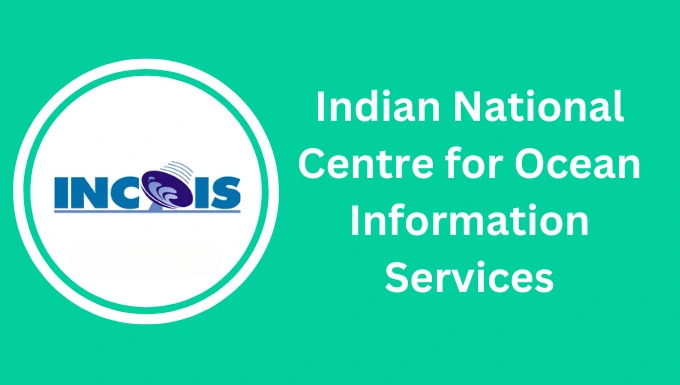
- 04 Dec 2023
Why is it in the News?
A wave rider buoy, equipped belonging to the Indian National Centre for Ocean Information Services (INCOIS), with GPS and various weather-related instruments, was found ashore at the Gopalpur Military Station in Ganjam district on Saturday.
About Indian National Centre for Ocean Information Services (INCOIS):
- INCOIS is an autonomous organization under the Ministry of Earth Sciences (MoES).
- It is a unit of the Earth System Science Organization (ESSO), New Delhi.
- It is located in Hyderabad & was established in 1999.
- The ESSO operates as an executive arm of the Ministry of Earth Sciences (MoES) for its policies and programmes.
- It is mandated to provide the best possible ocean information and advisory services to society, industry, government agencies and the scientific community through sustained ocean observations and constant improvement through systematic and focused research.
What is the Earth System Science Organisation (ESSO)?
- Earth System Science Organisation (ESSO) is a virtual organisation set up by the Ministry of Earth Sciences GOI in 2007 and it is the executive arm of MoES.
- It has three major branches of earth sciences viz.,
- Ocean Science & Technology
- Atmospheric Science & Technology
- Geosciences and Technology.
- The overall vision of the ESSO is to excel in knowledge and technology enterprise for the earth system science realm towards the socio-economic benefit of the Indian sub-continent and in the Indian Ocean region.
- The ESSO contributes to the areas of Weather (General) and Weather advisories specific to agriculture, aviation, shipping, sports, etc. Monsoon, Disasters (cyclones, earthquakes, tsunamis, sea level rise), Living and non-living resources (fishery advisory, poly-metallic nodules, gas hydrates, freshwater etc), Coastal and Marine Ecosystems and Climate Change, Underwater Technology.
PM Formalisation of Micro food processing Enterprises (PMFME) Scheme" launched under the Atmanirbhar Bharat Abhiyan with an outlay of Rs. 10,000 Crore supports 2 lakh micro food processing enterprises following One District One Product (ODOP) approac
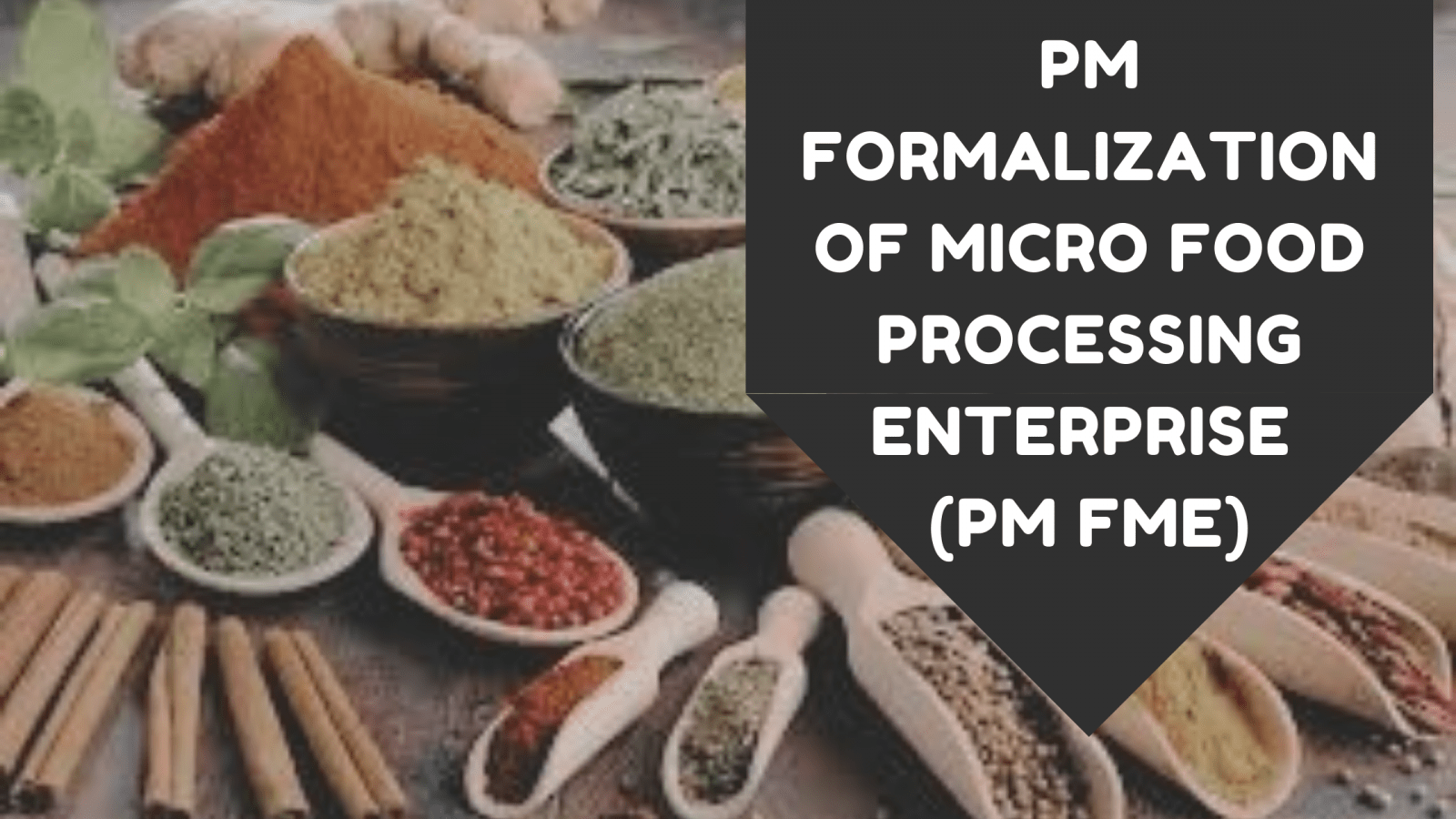
- 08 Dec 2023
Why is it in the News?
As part of Atmanirbhar Bharat Abhiyan, the Ministry of Food Processing Industries (MoFPI) is implementing a centrally sponsored "PM Formalisation of Micro food processing Enterprises (PMFME) Scheme" for providing financial, technical and business support for setting up / upgradation of micro food processing enterprises in the country.
About PM Formalisation of Micro food Processing Enterprises (PMFME) Scheme:
- Launched on 29th June 2020, PMFMPE is a Centrally Sponsored Scheme by the Ministry of Food Processing Industries.
- It is designed to address the challenges faced by the micro-enterprises and to tap the potential of groups and cooperatives in supporting the upgradation and formalization of these enterprises.
- Aims:
- Enhance the competitiveness of existing individual micro-enterprises in the unorganized segment of the food processing industry and promote formalization of the sector; and
- Support Farmer Producer Organizations (FPOs), Self Help Groups (SHGs), and Producers Cooperatives along their entire value chain.
- Objectives: To build the capability of microenterprises to enable:
- Increased access to credit by existing micro food processing entrepreneurs, FPOs, Self Help Groups, and Co-operatives.
- Integration with an organized supply chain by strengthening branding & marketing.
- Support for the transition of existing 2,00,000 enterprises into a formal framework.
- Increased access to common services like common processing facilities, laboratories, storage, packaging, marketing, and incubation services.
- Strengthening of institutions, research, and training in the food processing sector; and
- Increased access for the enterprises, to professional and technical support.
- Outlay:
- The scheme envisages an outlay of ? 10,000 crores over a period of five years from 2020-21 to 2024-25.
- The expenditure under the scheme would be shared in a 60:40 ratio between Central and State Governments, in a 90:10 ratio with the North
- In Eastern and the Himalayan States, a 60:40 ratio with UTs with the legislature and 100% by the Center for other UTs.
- Coverage:
- Under the scheme, 2,00,000 micro food processing units will be directly assisted with credit-linked subsidies.
- Adequate supportive common infrastructure and institutional architecture will be supported to accelerate the growth of the sector.
Data | Sharp rise in Indians illegally crossing U.S. northern border from Canada (The Hindu)
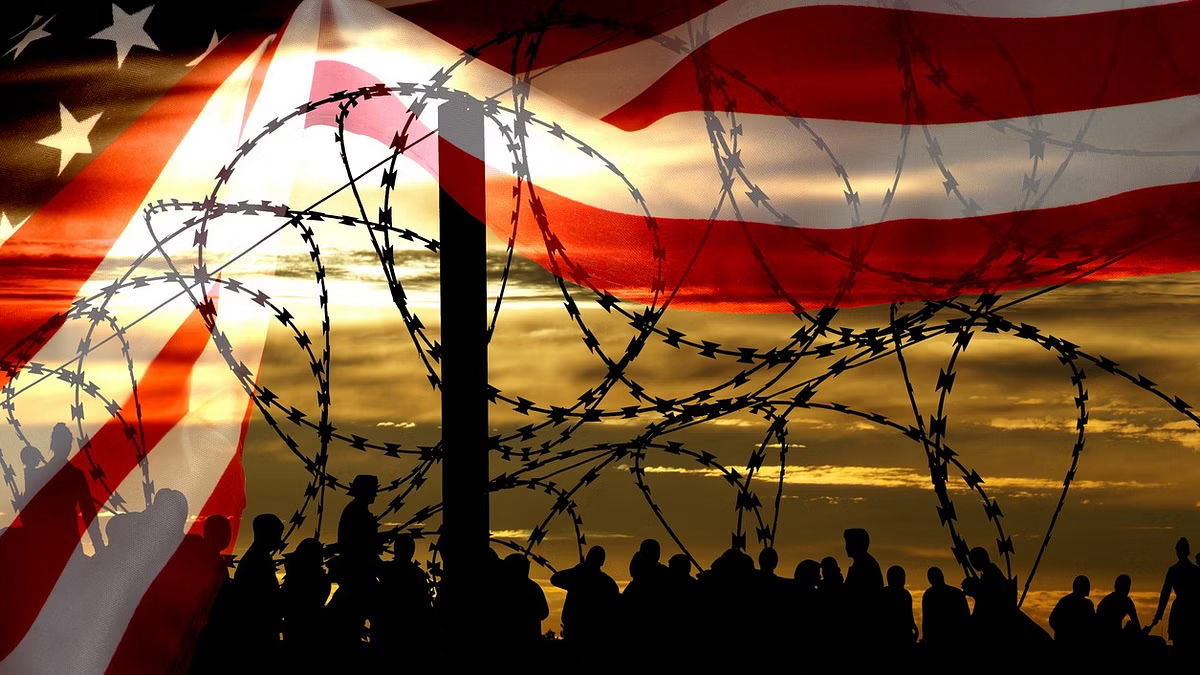
- 15 Dec 2023
Why is it in the News?
In the last ten years, the number of unauthorized Indian migrants entering the U.S. has surged significantly, climbing from a mere 1,500 a decade ago to an astonishing 96,917 in 2023, as reported by the U.S. Customs and Border Protection.
What are the Implications for India Amidst the Surge in Illegal Migrants?
- Bilateral Relations: The surge in illegal migration poses potential challenges to bilateral relations between India and the USA, impacting areas such as trade negotiations, security cooperation, and strategic partnerships.
- Economic Factors: India faces the risk of a brain drain, as skilled individuals seek illegal entry, potentially affecting sectors with a demand for skilled labour and impacting the country's economy.
- The outflow of skilled and educated individuals through illegal migration can have adverse effects on India's economy, leading to a depletion of talent and expertise.
- Labour Market Challenges: The departure of skilled or semi-skilled workers may create labour shortages in specific sectors, affecting India's workforce and economic productivity.
- Policy Repercussions: India may need to institute stringent policies to address the root causes of illegal migration, potentially diverting resources and attention from other developmental priorities.
What are the Causes Behind the Surge in Illegal Indian Migrants to the USA?
- Pull Factors: The USA's reputation for offering improved employment prospects, higher wages, and career advancement acts as a significant attraction for migrants.
- The allure of quality education and prestigious academic institutions in the USA attracts students and families in search of educational opportunities.
- The desire to reunite with family members or relatives already settled in the USA motivates some migrants to seek illegal entry for proximity to loved ones.
- Push Factors: Numerous push factors, including limited job opportunities and economic prospects in India, drive individuals to seek better employment opportunities abroad.
- Social conflicts or a lack of confidence in India's governance structure may prompt some individuals to search for a more stable environment elsewhere.
- Visa Backlogs and Alternative Routes: Smugglers adapt their methods, providing sophisticated services to facilitate illegal entry into America.
- Prolonged visa backlogs prompt individuals to explore alternative, albeit illegal, pathways to enter the USA due to extended waiting times and limited legal entry options.
- Global Migration Trends: The overall increase in global migration post-pandemic contributes to this surge as individuals seek improved opportunities and security in different countries.
- Misinformation: Social media and deceptive travel agencies disseminate misinformation, misleading desperate migrants and encouraging them to embark on perilous journeys guided by multiple facilitators across continents.
- Desperate migrants may undertake complex, multi-leg journeys through various continents and countries, facing numerous risks and challenges along the way.
What can be Done?
Prioritizing economic stability, job creation, and social welfare programs to alleviate distress and offer improved opportunities within India. Initiating diplomatic dialogues to comprehend and address concerns that contribute to migration, fostering collaboration with other nations to safeguard the rights of migrants.
Rashtriya Gokul Mission (RGM) (The Hindu)
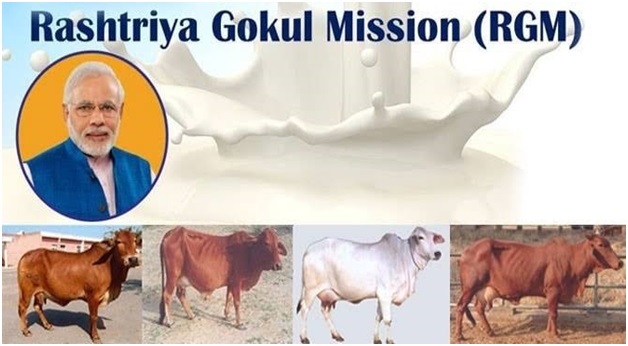
- 02 Nov 2023
Why in the News?
The Centre has decided to deploy National Level Monitors (NLM) to oversee the implementation of its livestock schemes including the National Livestock Mission and Rashtriya Gokul Mission.
About Rashtriya Gokul Mission (RGM):
- The Rashtriya Gokul Mission (RGM) has been implemented for the development and conservation of indigenous bovine breeds since December 2014.
- The scheme is important in enhancing milk production and productivity of bovines to meet the growing demand for milk and making dairying more remunerative to the rural farmers of the country.
- The scheme is also continued under the umbrella scheme Rashtriya Pashudhan Vikas Yojna from 2021 to 2026 with a budget outlay of Rs.2400 crore.
- The RGM will result in enhanced productivity and benefit of the programme, percolating to all cattle and buffaloes of India, especially with small and marginal farmers.
- This programme will also benefit women in particular since over 70% of the work involved in livestock farming is undertaken by women.
Objectives:
- To enhance the productivity of bovines and increase milk production in a sustainable manner using advanced technologies.
- To propagate the use of high genetic merit bulls for breeding purposes.
- To enhance Artificial insemination coverage through strengthening the breeding network and delivery of Artificial insemination services at farmer’s doorstep.
- To promote indigenous cattle & buffalo rearing and conservation in a scientific and holistic manner.
One Nation, One Registration Platform (The Hindu)
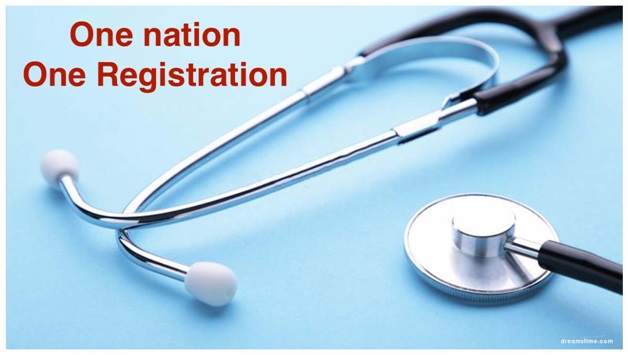
- 01 Nov 2023
Why in the News?
The National Medical Commission (NMC)will launch its “One Nation, one registration platform’‘ for doctors across the country
About One Nation, One Registration Platform:
- The National Medical Commission (NMC) will launch a patch trial of the National Medical Register (NMR), in which physicians will receive a unique identification number and, based on their location, be able to apply for a license to practice in any State within the next six months.
- The change was announced by the commission in a gazette notification earlier this year under the title "Registration of Medical Practitioners and Licence to Practice Medicine Regulations, 2023."
- The NMR will receive the data of almost 14 lakh doctors who are currently registered in the system.
- Objectives: The goal is to supply undergraduate students on the NMR with a masked ID, and based on when they complete their course, the ID is unmasked and assigned.
- It will eliminate duplication and red tape while also providing the public with access to information on any physician practising in India.
Features of the NMR:
- The public will have access to the NMR via the NMC website, which will take the role of the current Indian Medical Register (IMR). It will provide detailed information about registered doctors, such as:
- Unique Identification Number (UID): Each doctor will be assigned a unique identification number.
- Registration Number: The doctor’s registration number for verification.
- Qualifications: Information about the doctor’s educational qualifications.
- Specialization: The doctor’s area of expertise.
- Name and Place of Work: Details of the doctor’s name and workplace.
- Institute/University: The name of the institution or university where the qualifications were obtained.
Digital Health Incentives Scheme (DHIS) (NewsOnAir)
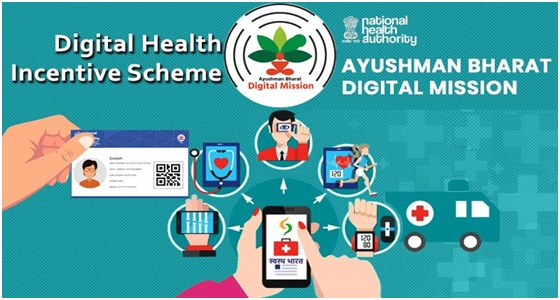
- 05 Aug 2023
Why in the News?
The National Health Authority (NHA) has recently declared the extension of its Digital Health Incentives Scheme (DHIS) until the 31st of December 2023.
About Digital Health Incentives Scheme (DHIS):
- Launched in December 2022, the DHIS became effective from 1st January 2023.
- The scheme is implemented by the National Health Authority (NHA) under the Ministry of Health and Family Welfare.
- Its primary objectives include giving a further impetus to digital health transactions across the country through the Ayushman Bharat Digital Mission (ABDM).
Salient Features of DHIS:
- The scheme offers incentives of up to four crore rupees, determined by the number of digital health records created and linked to patients' Ayushman Bharat Health Account numbers.
- Incentives are extended to hospitals, diagnostic labs, and providers of digital health solutions, including Hospital/Health Management Information Systems (HMIS) and Laboratory Management Information Systems (LMIS).
- Health facilities (hospitals and diagnostic labs) registered with the Ayushman Bharat Digital Mission's Health Facility Registry (HFR) and meeting the specified eligibility criteria can avail of the incentives.
Benefits of DHIS:
- Incentives for Digitization: Healthcare facilities and Digital Solution Companies participating in the scheme can earn incentives to cover expenses related to digitization.
- Enhanced Efficiency in Healthcare Delivery: DHIS streamlines the healthcare process, eliminating hassles in registration, appointment scheduling, consultations, IPD admission, discharge, and more.
- Robust Digital Health Ecosystem: The scheme contributes to the development of a strong digital health ecosystem, encompassing various levels of healthcare facilities.
- Improved Quality of Care: DHIS facilitates evidence-based, accessible, and high-quality healthcare services, leading to better patient outcomes and satisfaction.
Study in India (SII) portal (Indian Express)
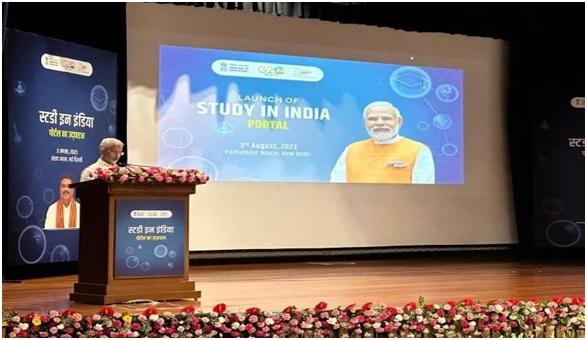
- 05 Aug 2023
Why in the News?
The Study In India (SII) portal was recently introduced by the Education Ministry, aiming to promote Indian education among international students.
About the Study in India (SII) portal:
- The Study in India (SII) portal serves as a dedicated website offering comprehensive information about higher education institutions (HEIs) in India.
- The main objective of the portal is to establish India as a global education hub and attract students from diverse backgrounds.
- The portal showcases a wide range of academic programs available in the HEIs, including undergraduate, postgraduate, and doctoral courses, along with courses related to the Indian Knowledge System (IKS), such as Yoga, Ayurveda, and classical arts.
- Detailed information about the academic facilities, research support, and other related offerings in the institutes is provided on the portal.
- It acts as a convenient one-stop platform for students, enabling them to register, apply for a visa, select desired courses, and receive offer letters from their chosen institutes.
- The portal allows students to apply to multiple institutes or courses of their preference, simplifying the application process.
- Study in India (SII) offers a streamlined and well-organized application process, providing international students with easy access to higher education opportunities in India.
What is Study in India (SII) Programme?
- The Study in India (SII) program is a prominent initiative initiated by the education ministry in 2018 with the aim of positioning India as a premier education destination for international students.
- The program seeks to attract foreign students to pursue higher education in India, providing them with valuable educational opportunities offered by renowned Indian universities.
Here to enhance partnership between EFTA, India: Norway's trade minister (Business Standard)
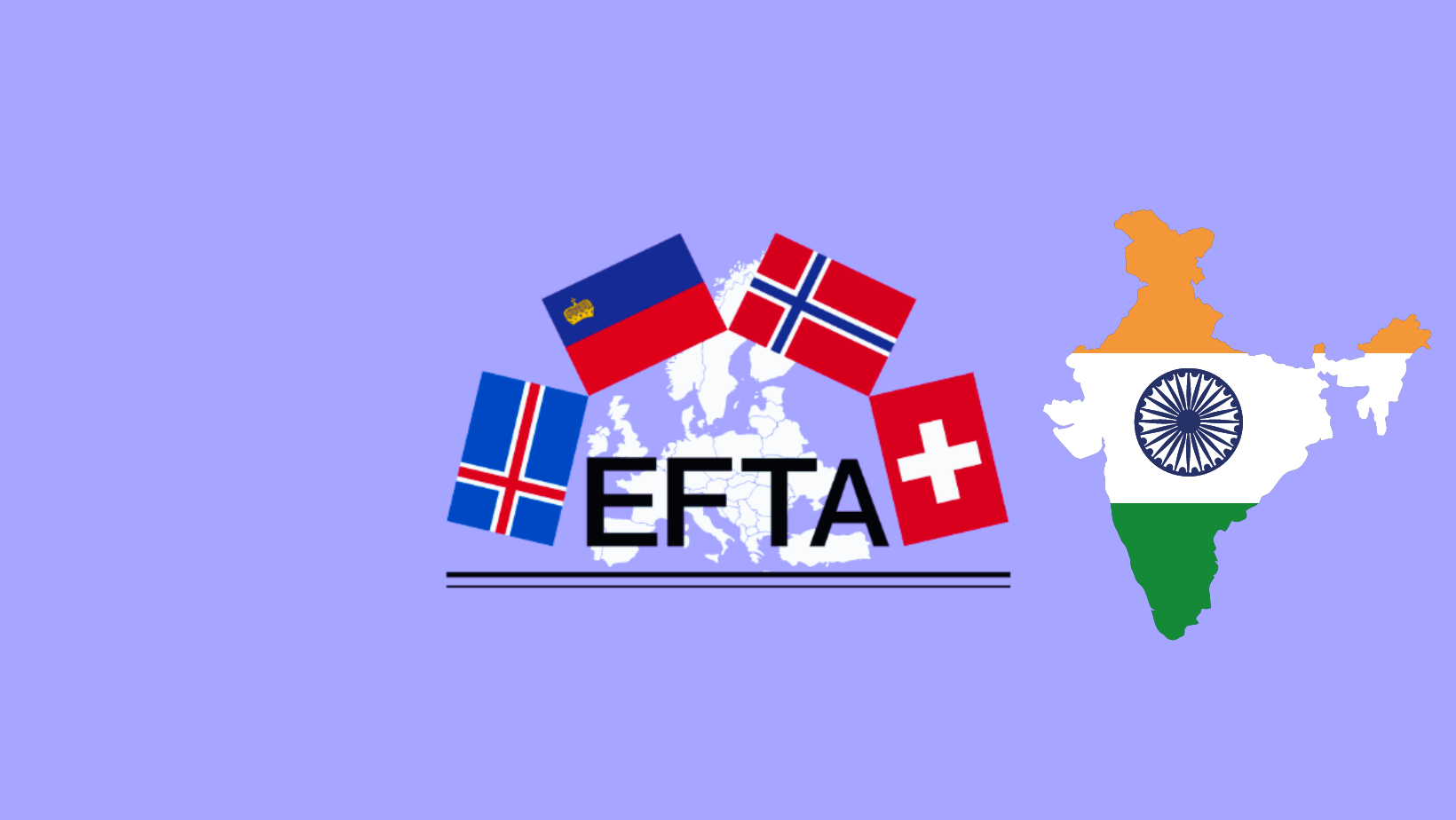
- 14 Dec 2023
Why is it in the News?
Norway's Minister of Trade and Industry Jan Christian Vestre has said his India visit aims to enhance collaboration between European free trade partners and India and improve framework conditions for job creation, value creation, and investments.
About the European Free Trade Association (EFTA):
- The European Free Trade Association (EFTA) is an intergovernmental organization established in 1960 by the Stockholm Convention.
- Its core objective is to foster free trade and economic integration among its member countries, both within Europe and on a global scale.
- Member Countries: EFTA comprises four member countries: Iceland, Liechtenstein, Norway, and Switzerland.
- These nations are characterized by open, competitive economies, demonstrating a shared commitment to progressively liberalize trade both within multinational forums and through individual free trade agreements.
- Customs Distinction: Unlike the European Union (EU), EFTA operates differently as it is not a customs union.
- This key distinction allows each EFTA State the autonomy to establish its own customs tariffs and formulate foreign trade measures independently concerning non-EFTA States.
- Association Responsibilities:
- EFTA manages various aspects crucial to its objectives, including:
- Facilitating free trade among EFTA countries.
- Overseeing EFTA's engagement in the European Economic Area (EEA), encompassing the European Union and three EFTA countries (Iceland, Liechtenstein, and Norway, excluding Switzerland).
- Managing EFTA's extensive network of free trade agreements globally.
- Free Trade Agreement Network: EFTA member countries boast one of the largest networks of Free Trade Agreements (FTAs) globally.
- This comprehensive network spans over 60 countries and territories, incorporating the European Union among others.
EFTA plays a pivotal role in promoting economic collaboration, free trade, and global engagement, distinguishing itself from the EU through its approach to customs and foreign trade measures.
What is a Free Trade Agreement?
- A Free Trade Agreement (FTA) is an agreement between two or more nations aimed at lowering barriers to imports and exports among them.
- In a free trade scenario, goods and services can move across international borders with minimal government tariffs, quotas, subsidies, or restrictions hindering their exchange.
- The principle of free trade stands in contrast to trade protectionism or economic isolationism.
- FTAs come in various forms, including Preferential Trade Agreements, Comprehensive Economic Cooperation Agreements, and Comprehensive Economic Partnership Agreements (CEPA).
COP28: What was the most important deal short (Indian Express)
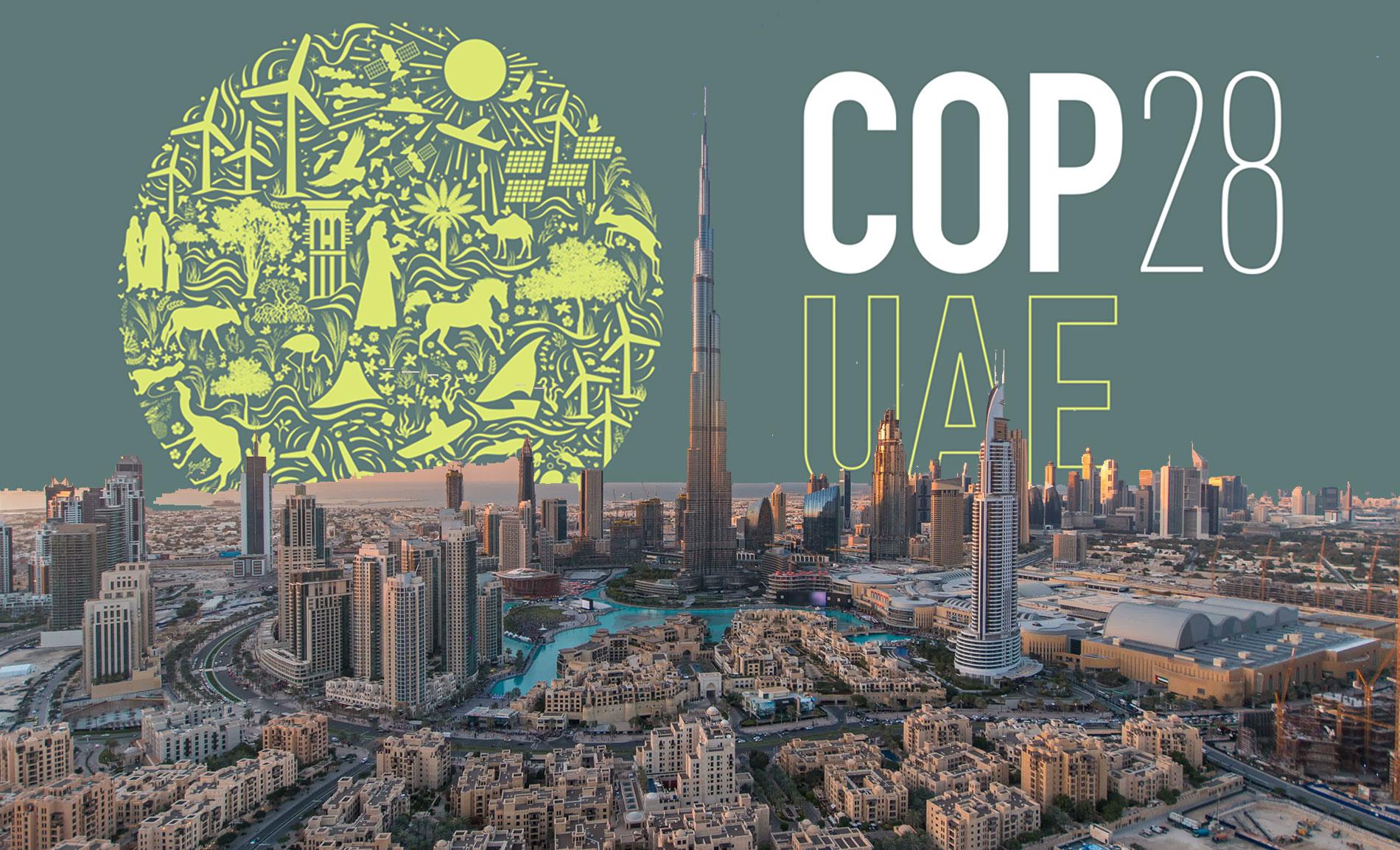
- 14 Dec 2023
Why is it in the News?
COP28: The annual climate conference this year saw some key resolutions on fossil fuels, methane emissions, and funds to fight global warming, among others. However, many concerns remain.
Context:
- The 2023 United Nations Climate Change Conference, also referred to as COP28 took place from November 30 to December 12 at Expo City in Dubai, United Arab Emirates.
- While the event yielded significant outcomes, it, akin to its predecessors, fell short of meeting the anticipated expectations.
Key Outcomes of COP28:
- Fossil Fuel Transition Ambiguity: Acknowledging the role of fossil fuels in global warming for the first time, the agreement calls for countries to contribute to transitioning away from fossil fuels to achieve net-zero emissions by 2050.
- However, the lack of specific time schedules and targets disappointed some nations that expected a more explicit commitment to a "fossil fuel phase-out."
- Renewable Energy Tripling: The agreement calls on countries to contribute to tripling the global installed capacity of renewable energy and doubling annual improvements in energy efficiency.
- This measure is expected to result in emissions avoidance of approximately 7 billion tonnes of carbon dioxide equivalent by 2030.
- However, the global nature of this target raises questions about individual country responsibilities.
- Coal Phase-Down Continuation: The agreement reiterates the commitment to the phase-down of coal, following up on the decision made at COP26.
- While there were considerations to impose restrictions on new coal-fired power plants without carbon capture and storage, these were dropped due to resistance from countries like India, China, and South Africa.
- The agreement lacks specifics on measurement criteria or baseline for this phase-down.
- Methane Emission Challenges: Despite the significance of methane as a greenhouse gas, responsible for nearly 25% of emissions and is 80 times more potent than CO2, the agreement avoids setting targets for methane emission cuts in 2030.
- Countries like India are opposed to mandates due to the agricultural sector's major role in methane emissions.
- Operational Loss & Damage Fund: A significant outcome for vulnerable nations, COP28 operationalized the Loss and Damage Fund, established in COP27.
- Commitments, totaling around US$ 800 million, were made during the conference to assist countries recovering from climate-induced disasters.
- Global Goal on Adaptation Establishment: COP28 adopted a global framework for adaptation, addressing a historic imbalance where adaptation efforts received less attention and resources compared to mitigation activities.
- The framework, though established, lacks financial provisions, necessitating further strengthening in subsequent years.
- Adaptation Challenges: While the global adaptation framework is a positive step, there is still work to be done, particularly in defining indicators for measuring progress on each global goal.
- Adaptation efforts historically focused on local initiatives, and the agreement aims to garner more attention and resources for these endeavours on a global scale.
- Climate Action Acceleration Shortcomings: The final agreement falls short of providing sufficient impetus for the acceleration of climate action in the immediate term.
What is the Conference of the Parties (COP)?
- In 1992, Rio Earth Summit, 154 countries joined an international treaty, the United Nations Framework Convention on Climate Change, as a framework for international cooperation to combat climate change by limiting average global temperature increases and the resulting climate change, and coping with impacts that were, by then, inevitable.
- The COP is the supreme decision-making body of the Convention.
- All States that are Parties to the Convention are represented at the COP, at which they review the implementation of the Convention and any other legal instruments that the COP adopts and take decisions necessary to promote the effective implementation of the Convention, including institutional and administrative arrangements.
- Currently, there are 198 'parties' or signatories of the Convention.
Green Rising initiative launched at RewirEd summit to empower Youth-Led climate solutions (DD News)
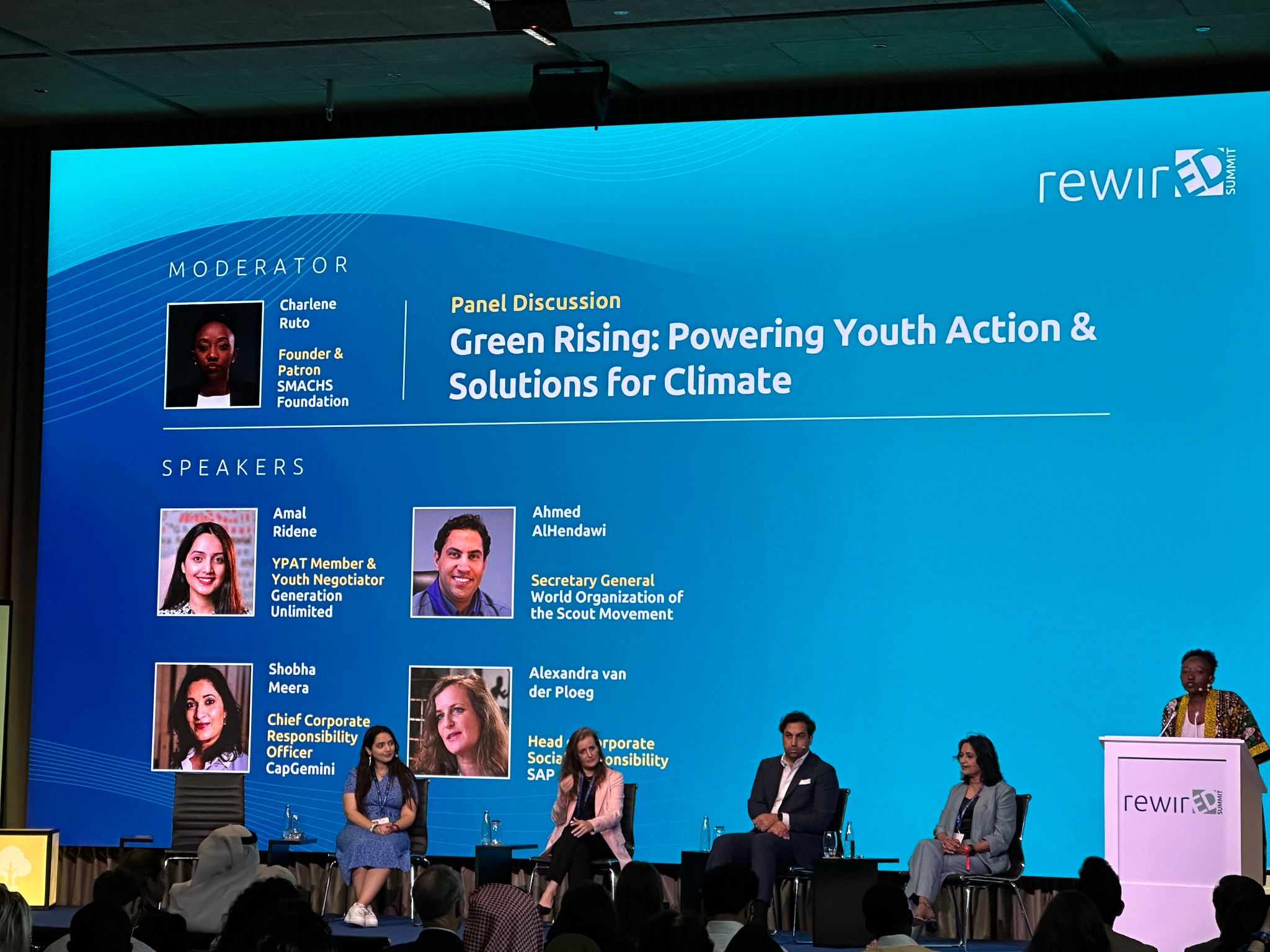
- 09 Dec 2023
What is the Green Rising Initiative?
- The "Green Rising" initiative focuses on engaging youth for impactful environmental actions at the grassroots level, aligning with the global effort to address the severe impacts of climate change.
- This initiative encompasses both the global "Green Rising" initiative and the "Green Rising India Alliance," a collaborative endeavor that brings together UNICEF, Generation Unlimited, and a diverse network of public, private, and youth partners.
- The primary objective is to mobilize millions of young individuals globally, encouraging their active engagement in green initiatives aimed at addressing and adapting to the profound impacts of climate change within their communities.
- In India, this effort is channelled through the YuWaah campaign, which specifically focuses on harnessing the energy and commitment of the youth to drive impactful environmental actions at the grassroots level.
About UNICEF:
UNICEF, or the United Nations International Children's Emergency Fund, is a specialized agency of the United Nations committed to promoting the well-being and rights of every child globally.
- Foundation and Establishment: Established in 1946 by the United Nations General Assembly, UNICEF was originally designed to provide emergency food and healthcare to children in countries devastated by World War II.
- Over time, UNICEF's scope evolved to include long-term developmental programs, focusing on education, healthcare, nutrition, clean water, sanitation, and protection for children in need.
- UNICEF is governed by an Executive Board consisting of 36 members who are elected to terms of three years by the United Nations Economic and Social Council.
- Universal Presence: UNICEF operates in over 190 countries and territories worldwide, making it one of the most extensive and widely recognized humanitarian organizations globally.
- Child Rights Advocacy: UNICEF is a leading advocate for children's rights, working to ensure that every child has the right to survive, thrive, and reach their full potential, regardless of their background or circumstances.
- Emergency Response: In times of crises, including natural disasters, conflicts, and pandemics, UNICEF plays a crucial role in providing immediate and life-saving assistance to affected children and communities.
- Partnerships and Collaborations: UNICEF collaborates with governments, non-governmental organizations (NGOs), other UN agencies, and the private sector to implement its programs and maximize its impact.
- Funding Mechanism: UNICEF is funded entirely by voluntary contributions from governments, private donors, businesses, and the general public. It relies on these funds to carry out its programs and respond to emergencies.
- Focus on Equality and Inclusion: UNICEF emphasizes the importance of equality and inclusion, working to address disparities and ensure that the most vulnerable children, including those with disabilities or from marginalized communities, are not left behind.
- Global Campaigns: UNICEF spearheads global campaigns to address critical issues affecting children, such as vaccination drives, education initiatives, and efforts to eliminate child labour and violence against children. These campaigns aim to rally public support and create awareness about the challenges faced by children worldwide.
- It was awarded the Nobel Prize for Peace in 1965 for the “promotion of brotherhood among the nations”.
- Headquarters: New York City
What is the Universal Declaration of Human Rights, which is marking its 75th anniversary? (Indian Express)
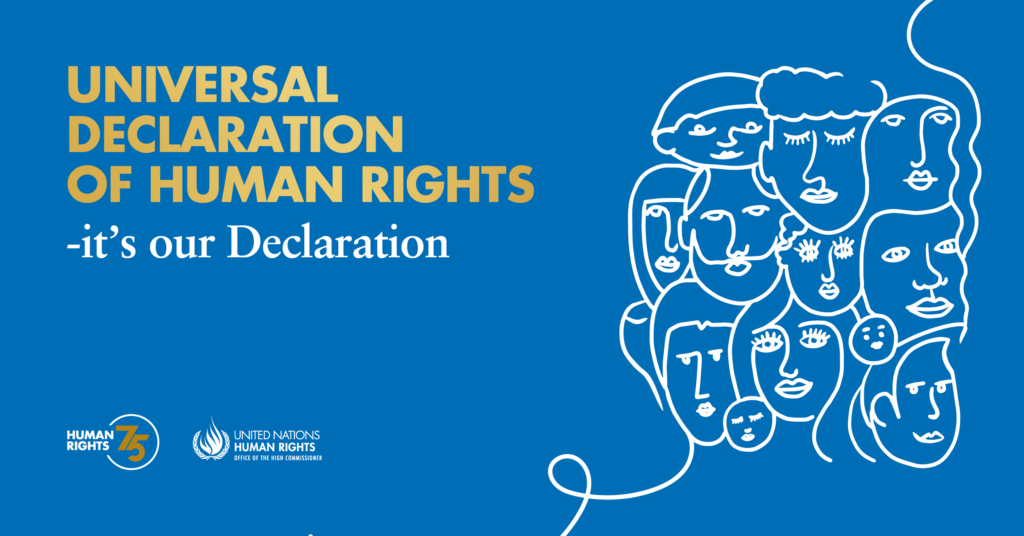
- 09 Dec 2023
Why is it in the News?
Seventy-five years ago on Sunday, the UN General Assembly approved the Universal Declaration of Human Rights at a meeting in Paris – laying one of the foundation stones of the international order that emerged following the horrors of World War II.
What is the Universal Declaration of Human Rights (UDHR)?
- On 10 December 1948, during a session in Paris, the United Nations General Assembly unanimously endorsed the Universal Declaration of Human Rights (UDHR), marking a pivotal moment in shaping the post-World War II international order.
- The UDHR emerged as a response to wartime atrocities and aimed to establish a shared understanding of the fundamental rights and freedoms inherent to all individuals.
- A concise yet impactful document, the declaration comprises a preamble and 30 articles that delineate essential rights and freedoms.
- These 30 articles encompass a comprehensive spectrum of civil, political, economic, social, and cultural rights.
- Emphasizing their universality, these rights are deemed applicable to all individuals, irrespective of nationality, ethnicity, gender, religion, or any other status.
- While not legally binding, the UDHR has functioned as a guiding force inspiring the development of international human rights law.
Key Features:
- Preamble: The preamble elucidates the reasons behind adopting the declaration, underscoring the inherent dignity and the equal and inalienable rights of all members of the human family.
- Articles: The UDHR articulates 30 articles outlining a wide array of civil, political, economic, social, and cultural rights. Examples of these rights include:
- The right to life, liberty, and security of person.
- The right to freedom of religion, expression, and assembly.
- The right to work and education.
- The right to an adequate standard of living.
- The declaration asserts that "all are equal before the law" and emphasizes the entitlement of everyone to "a fair and public hearing by an independent and impartial tribunal."
- It also affirms the right of "everyone to seek and to enjoy in other countries asylum from persecution.
Achievements of UNDHR:
- The United Nations Universal Declaration of Human Rights (UNDHR) is acknowledged for its significant impact, having served as the inspiration and foundation for over 70 human rights treaties at both global and regional levels, as noted by the United Nations.
- It played a pivotal role in inspiring movements such as decolonization, the anti-apartheid movement, and various struggles for freedom worldwide, including those related to gender, LGBTIQ+ rights, and opposition against racism.
What is the Current Situation?
- As the 75th anniversary is commemorated, human rights face challenges amid conflicts such as the Israel-Hamas war, Russia's actions in Ukraine, internal strife in Myanmar and Sudan, and numerous other global situations.
- UN Secretary-General Antonio Guterres has remarked that the Universal Declaration has been frequently misused and abused, exploited for political gain, and often ignored by those who should uphold it.
- Contrastingly, Amnesty International asserts that the declaration serves as living proof that a global vision for human rights is attainable and can be realized.
- Despite instances of neglect or exploitation, the declaration remains relevant, and the world is encouraged to recognize its successes while learning from its failures.
Offshore Areas Minerals (Development and Regulation) Amendment Bill, 2023 (Indian Express)
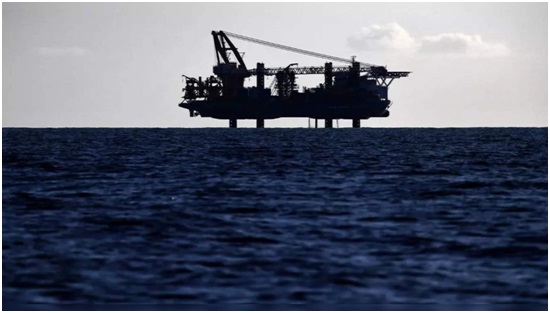
- 02 Aug 2023
Why in the News?
The Offshore Areas Minerals (Development and Regulation) Amendment Bill, 2023, has been successfully passed by the Lok Sabha.
The Offshore Areas Minerals (Development and Regulation) Amendment Bill, 2023:
It seeks to amend the existing Offshore Areas Mineral (Development and Regulation) Act, 2002, to regulate mining activities in India's maritime zones.
The key highlights of the Bill include:
- Reservation of Offshore Areas: The government is empowered to reserve offshore areas not under any operating rights.
- Composite Licence and Production Lease: The administering authority can grant composite licenses or production leases to the government or a government company.
- Fixed Production Lease Period: The provision for renewal of production leases is removed, and a fixed period of fifty years, akin to the Mines and Minerals (Development and Regulation) Act 1957, is introduced.
- Auction-Based Allocation: Private sector entities can acquire production leases through auction by competitive bidding.
- Operating Rights for Government Entities: Operating rights without competitive bidding can be granted to government or government companies or corporations in mineral-bearing areas reserved by the central government.
- Atomic Minerals: For atomic minerals, exploration licenses or production leases can only be granted to the government or government corporations.
- Production Commencement Timeline: A four-year timeline for production commencement and dispatch after the execution of composite licenses or production leases is introduced, with a two-year timeline (extendable by one year) for re-commencement of production and dispatch after discontinuation.
- Framing Rules for Conservation and Environment: The central government is enabled to establish rules for mineral conservation and systematic development in offshore areas, along with measures to protect the environment and control pollution resulting from exploration or production operations.
TransLunar Injection (TLI) (The Hindu)
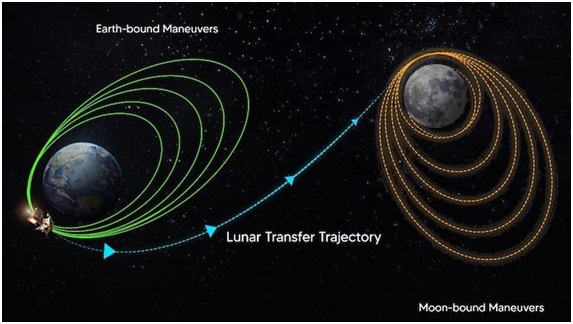
- 02 Aug 2023
Why in the News?
The TransLunar Injection (TLI) was performed successfully from ISRO Telemetry, Tracking and Command Network (ISTRAC) in Bengaluru recently.
What is the TransLunar Injection (TLI)?
- TransLunar Injection (TLI) is a crucial space mission maneuver, propelling spacecraft from Earth's orbit to a trajectory aimed at reaching the Moon.
- An essential step in lunar missions, TLI allows spacecraft to break free from Earth's gravity and commence their journey toward the Moon.
- TLI is executed when the spacecraft reaches the perigee, the closest point to Earth in its orbit.
- During TLI, the spacecraft's propulsion system ignites its engines, accelerating the craft and providing the necessary speed to escape Earth's gravitational pull.
- The thrust and duration of the TLI burn are determined by factors like spacecraft mass, Earth's orbital velocity, and specific mission objectives.
- Following a successful TLI, the spacecraft is directed onto a lunar trajectory, continuing its autonomous journey to the Moon without further reliance on Earth's propulsion.
- Subsequent to TLI, the spacecraft enters a transfer orbit, an elliptical path that intersects with the Moon's orbit.
- The spacecraft traverses this highly eccentric orbit until it reaches the lunar surface.
- As the spacecraft approaches the Moon, additional maneuvers like lunar orbit insertion (LOI) may be executed to enter lunar orbit or facilitate landing, based on the mission's objectives.
- TLI has been effectively utilized in numerous Moon missions, including Apollo, Chang'e, and Artemis missions.
National Digital Nagrik Forum (Indian Express)
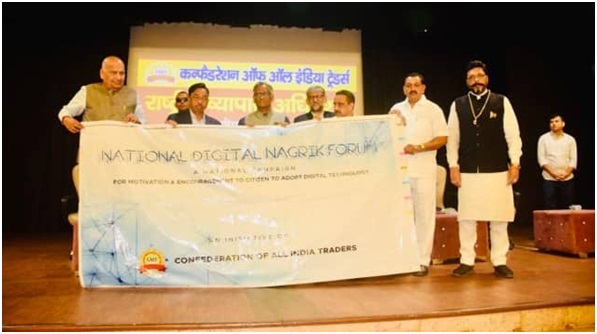
- 01 Aug 2023
Why in the News?
The forum by the Confederation of All India Traders (CAIT) aims to raise awareness about digital regulations and help build the capacities of citizens to engage with innovation via expert sessions and instructional materials.
About the National Digital Nagrik Forum:
- The National Digital Nagrik Forum is an online platform with the primary goal of advancing the rights of traders, consumers, and various sections of society, while also influencing policy to foster the growth of the digital trade economy.
- Through expert sessions and instructional materials, the forum aims to raise awareness about digital regulations and empower citizens to engage with innovation effectively.
- The main objective is to shape policy discourse around the digital economy trade in India, aligning with the Government of India's vision of establishing a trillion-dollar digital economy.
- Simultaneously, it seeks to maintain an open, safe, trusted, and accountable Internet ecosystem.
- The forum will conduct awareness camps, digital and physical dialogues, and training sessions.
- It will also engage in targeted outreach to stakeholders from the government, private sector, and civil society.
- The National Digital Nagrik Forum will concentrate on five core themes:
- The first pillar focuses on consumer protection and online safety, with a central emphasis on efficient grievance redressal mechanisms.
- The second pillar addresses the challenges of digital cartelization, advocating for a level-playing field to discourage discriminatory and anti-competitive practices in the online world.
- The third pillar explores the potential of Indian digital technologies to transform retail and industrial trade, while also contributing to employment growth and expanding investment opportunities.
- The fourth pillar advocates for a first principles-based taxation policy that fosters certainty and productivity, especially for sectors with high growth potential. It simultaneously works to prevent illegal activities like tax evasion and money laundering.
- The fifth pillar conducts research on emerging technologies such as blockchain and artificial intelligence to assess their impact on retail trade and ensure the protection of consumers' interests.
- The National Digital Nagrik Forum aims to make significant contributions towards shaping a vibrant digital economy in India, fostering fair trade practices, and safeguarding the interests of both consumers and traders.
Voyager 2 Spacecraft (HT)
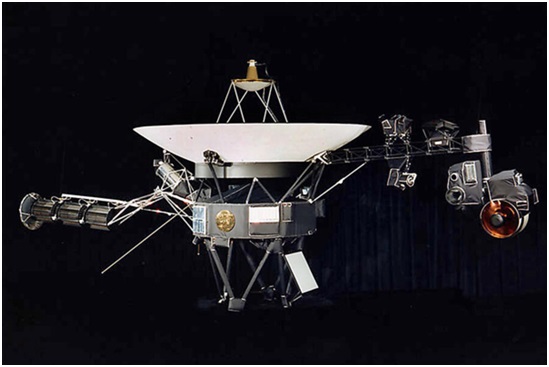
- 31 Jul 2023
Why in the News?
NASA’'s Voyager 2 spacecraft, which is venturing through space between stars, faces communication problems due to antenna misalignment. .
About Voyager 2 Spacecraft:
- Voyager 2 is an iconic interplanetary spacecraft launched by NASA on August 20, 1977, with the primary objective of exploring the outer planets of our solar system.
- It is part of the Voyager program, and along with its twin, Voyager 1, it has provided invaluable insights into the distant regions of our cosmic neighborhood.
- The spacecraft is equipped with a suite of scientific instruments to study various aspects of the planets it encounters, including their atmospheres, magnetic fields, and planetary surfaces.
- Voyager 2 successfully conducted close flybys of Jupiter in 1979, Saturn in 1981, Uranus in 1986, and Neptune in 1989, becoming the first and only spacecraft to visit these four giant gas planets.
- Beyond its initial mission, Voyager 2 continues to be operational and remains in communication with Earth, traveling at an impressive speed of approximately 34,000 miles per hour (55,000 kilometers per hour).
- It has since left the heliosphere, the region influenced by the Sun's magnetic field, and entered interstellar space, becoming the second human-made object to do so after Voyager 1.
- Throughout its journey, Voyager 2 has provided a wealth of data and discoveries about the outer planets and their moons, as well as valuable information about the space environment outside the solar system.
- It has captured breathtaking images of planetary systems, revealing the beauty and complexity of the outer planets and their fascinating moons.
- The spacecraft continues to be a remarkable testament to human ingenuity and curiosity as it ventures farther into the cosmos, providing us with an enduring legacy of exploration and knowledge about our celestial neighbors.
ULLAS Initiative (PIB)
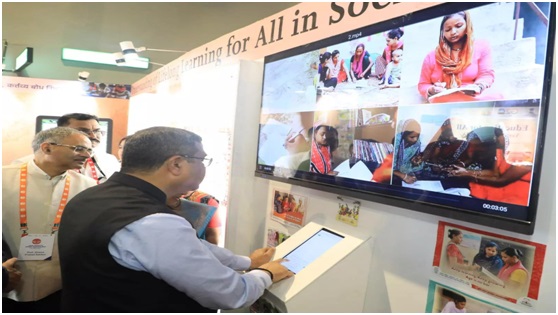
- 31 Jul 2023
Why in the News?
In New Delhi, the logo, slogan "Jan Jan Sakshar," and mobile application of ULLAS were recently unveiled by Shri Dharmendra Pradhan, the Union Minister of Education and Minister of Skill Development and Entrepreneurship.
About the ULLAS Initiative:
- The ULLAS (Understanding Lifelong Learning for All in Society) initiative, holds the potential to revolutionize education and literacy nationwide.
- Its primary objective is to create a learning ecosystem that reaches every individual, bridging the gaps in basic literacy and essential life skills.
- Targeting citizens aged 15 and above who missed the opportunity to attend formal schooling, the initiative imparts basic education, digital and financial literacy, and critical life skills.
- Implementation is driven by volunteerism, emphasizing community participation.
- The slogan of the initiative is "ULLAS: Nav Bharat Saksharta Karyakram."
- To support its goals, the ULLAS app was launched, designed with user-friendliness and interactivity in mind.
- Available on both Android and iOS platforms, the app serves as a digital gateway for learners to access a diverse range of learning resources through the DIKSHA portal of NCERT.
- The ULLAS app facilitates the registration of learners and volunteers, either through self-registration or with the assistance of surveyors.
- Significance:
- This app plays a crucial role in promoting functional literacy, vocational skills, and vital life skills such as financial literacy, legal literacy, digital literacy, and empowering citizens to actively participate in nation-building efforts.
- Furthermore, the ULLAS Initiative nurtures a culture of continuous learning and knowledge-sharing within communities across India, fostering a brighter future for the nation.
National Coal Index (AIR)
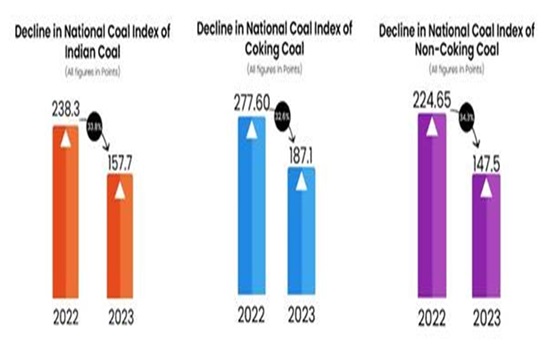
- 27 Jul 2023
Why in the News?
The National Coal Index (NCI) has shown a significant decline of 33.8 per cent in May this year at 157.7 points compared to May last when it was at 238.3 points. It indicates a strong supply of coal in the market, with sufficient availability to meet the growing demands.
About National Coal Index:
- Launch Date:
- The National Coal Index was introduced in the year 2020.
- Ministry:
- Developed under the purview of the Ministry of Coal, India.
- The esteemed Indian Statistical Institute, Kolkata, played a key role in creating the index as part of India's transition away from coal.
- Price Index:
- It serves as a price index, reflecting changes in the price level of coal during a specific month relative to the fixed base year.
- Objective:
- The primary objective of the National Coal Index is to offer an accurate reflection of the market price of coal.
- Base Year:
- The base year for the index is 2017-18.
- Inclusive Prices:
- The price index amalgamates coal prices from various sales channels, including Notified Prices, Auction Prices, and Import Prices.
- The National Coal Index combines coal prices from all sales channels, including notified prices, auction prices and import prices.
- It serves as a reliable indicator of market dynamics, providing valuable insights into coal price fluctuations.
- The National Coal Index (NCI) has shown a significant decline of 33.8% in May 2023 compared to May 2022, which suggests significant reduction in coal prices.
- This indicates a strong supply of coal in the market, with sufficient availability to meet the growing demands.
Ichamati River (PIB)
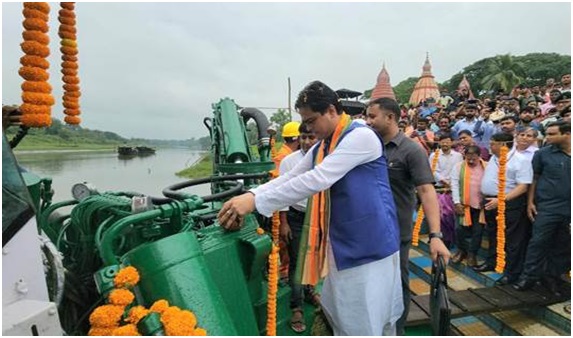
- 06 Oct 2023
Why in the News?
The Minister of State for Ports, Shipping, and Waterways recently launched the dredging project on National Waterways 44 in the Ichamati River of West Bengal.
About the Ichamati River:
- The Ichamati River crosses both India and Bangladesh.
- It serves as a natural boundary between the two nations India and Bangladesh.
- It has three main sections.
- The longest part originates from the Mathabhanga River, a branch of the Padma River, flowing for 208 kilometers before merging with the Kalindi River near Hasnabad in North 24 Parganas and Debhata in the Satkhira District of Bangladesh.
- Additionally, the Ichhamati River and its tributaries together create a large oxbow lake complex in the North 24-Paraganas district, near Bangaon.
NanoPtA (The Hindu)
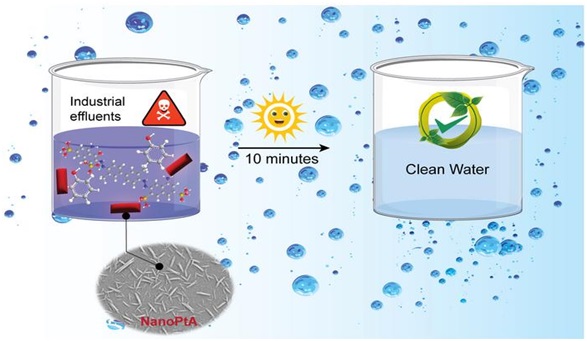
- 06 Oct 2023
Why in the News?
Scientists at the Indian Institute of Science's Materials Research Centre (MRC) have recently created a novel enzyme mimic known as NanoPtA.
About NanoPtA:
- The research team at the Materials Research Centre (MRC), Indian Institute of Science (IISc), has created a unique platinum-based nanozyme called NanoPtA.
- This nanozyme can be turned into a powder for use in industries.
- When NanoPtA encounters wastewater, the molecule's benzene rings and long alkyl chains engage in multiple non-covalent interactions.
- Individual NanoPtA molecules link together to form tape-like structures that emit light, which is the source of its oxidizing capability.
- In the presence of sunlight, this nanozyme can break down pollutants in wastewater, reducing its toxicity.
- Remarkably, the nanozyme can rapidly degrade even small amounts of common contaminants like phenols and dyes (micromolar levels) within ten minutes when exposed to sunlight.
- The researchers also observed that the NanoPtA complex remained stable for up to 75 days at room temperature.
Applications:
- Besides wastewater treatment, this nanozyme could find applications in healthcare and serve as a valuable diagnostic tool for neurological and neurodegenerative diseases.
National Turmeric Board (NTB) (PIB)
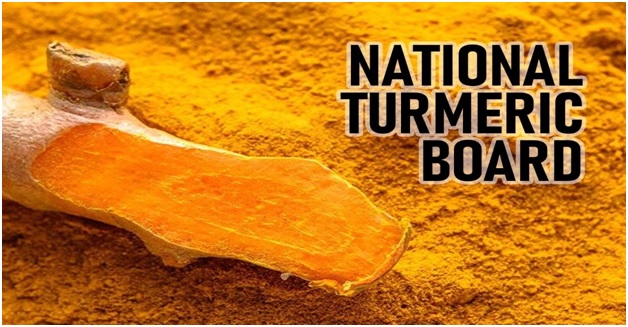
- 06 Oct 2023
Why in the News?
The Government of India recently announced the formation of the National Turmeric Board.
About the National Turmeric Board:
- The National Turmeric Board has a specific focus on developing and expanding turmeric and its products in India.
- It's especially dedicated to helping turmeric growers improve their skills and capabilities to add more value to their products.
- The Board also works to ensure high-quality and safe turmeric products.
- The composition of the Board includes a Chairperson appointed by the Central Government, members from various government departments such as AYUSH, Pharmaceuticals, Agriculture & Farmers Welfare, Commerce & Industry, as well as senior representatives from three states (on a rotational basis).
- Additionally, it includes representatives from national/state research institutions, turmeric farmers, and exporters.
- The Department of Commerce appoints a Secretary for the Board, and this department provides funds and infrastructure support.
- The NTB's main responsibilities include boosting demand, production, research, market connections, and exports related to turmeric.
Mangaluru | Archaeologist discovers inscription announcing the death of King KulashekaraAlupendra I at Someshwara (The Hindu)
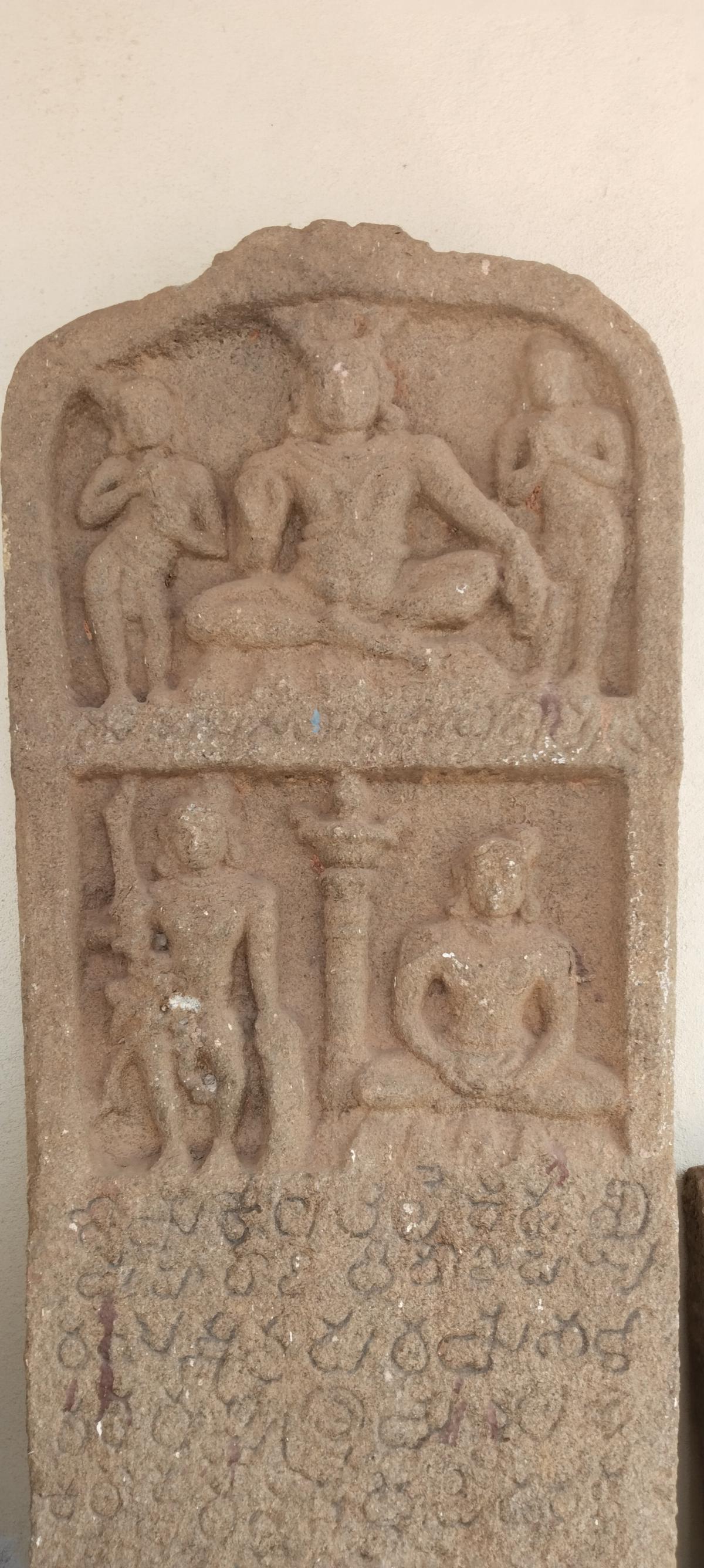
- 20 Oct 2023
Why in the News?
During a recent archaeological exploration at Someshwara near Mangaluru, Karnataka, archaeologists unearthed a rare inscription related to the Alupa dynasty.
About the Someshwara inscription:
- This inscription holds great importance in understanding Tuluva history and culture.
- It features two panels on top, with the first line carved between them.
- The rest of the inscription, inscribed below the panels in Kannada script and the language of 12th century characters, announces Alupendra I's death.
- The human figures depicted in the inscription are KulashekaraAlupendra.
- He is depicted in the first figure standing in Tribhanga (tri-bent stance).
- He is holding a sword in his right hand and a gurani (shield) in his left.
- The King is represented in a sitting posture on a mound to the left of this panel, separated by a pillar, resting both palms on the center of his legs in dhyana mudra.
About the Alupa dynasty:
- The Alupa dynasty, active from the 2nd to the 15th century CE, ruled over Alvakheda Arusasira in the coastal regions of modern Karnataka.
- Initially independent, they later became vassals to powers like the Kadambas, Chalukyas, Rashtrakutas, and Hoysalas due to shifting politics in Southern India.
- They practiced matrilineal inheritance.
- Their descendants, known as the Bunt, continue to follow this system and bear surnames like Shetty, Rai, Hegde, Alva, and Chowta.
- While most are Hindus, some still follow Jainism.
- The last Alupa king, Kulasekharadeva Alupendradeva, is documented through a 1444 CE inscription in Mudabidri's Jain Basadi.
SC pulls up Bhopal municipal corporation for flouting Solid Waste Management Rules (DownToEarth)
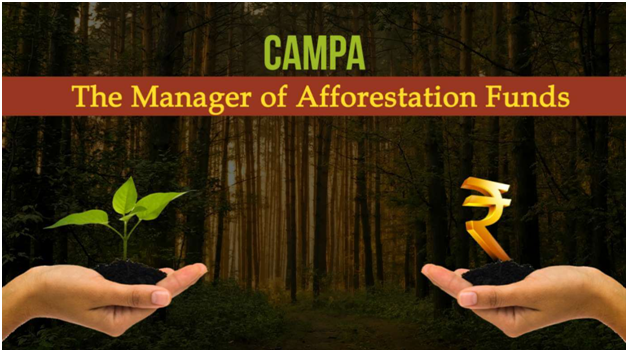
- 05 Dec 2023
Why is it in the News?
There is non-compliance with the provision of the Solid Waste Management Rules, 2016 by the Bhopal Municipal Corporation, the Supreme Court observed December 1, 2023 after going through the affidavit filed by the corporation.
What is About Compensatory Afforestation Fund Management and Planning Authority (CAMPA)?
- The Supreme Court of India, in 2001, mandated the creation of the Compensatory Afforestation Fund and the Compensatory Afforestation Fund Management and Planning Authority (CAMPA).
- Initially, an ad-hoc CAMPA was established in 2006 to manage the Compensatory Afforestation Fund.
- (CAMPA) are meant to promote afforestation and regeneration activities as a way of compensating for forest land diverted to non-forest uses.
- National CAMPA Advisory Council has been established as per orders of The Hon’ble Supreme Court with the following mandate:
- Lay down broad guidelines for State CAMPA.
- Facilitate scientific, technological and other assistance that may be required by State CAMPA.
- Make recommendations to State CAMPA based on a review of their plans and programmes.
- Provide a mechanism to State CAMPA to resolve issues of an inter-state or Centre-State character.
CAMPA Act:
- To address the loss of forest area and ensure sustainability, the Government of India introduced the CAMPA (Compensatory Afforestation Fund Management and Planning Authority) Act.
- This legislation establishes the National Compensatory Afforestation Fund in the Public Account of India and a State Compensatory Afforestation Fund in the Public Account of each state.
- These funds receive payments for compensatory afforestation, net present value of forests (NPV), and other project-specific payments.
- The National Fund gets 10% of these funds, while the State Funds receive the remaining 90%.
- As per the Act, companies diverting forest land must provide alternative land for compensatory afforestation.
- For afforestation purposes, companies are required to pay for planting new trees in the alternative land provided to the state.
Swamp Deer (NewsOnAIR)
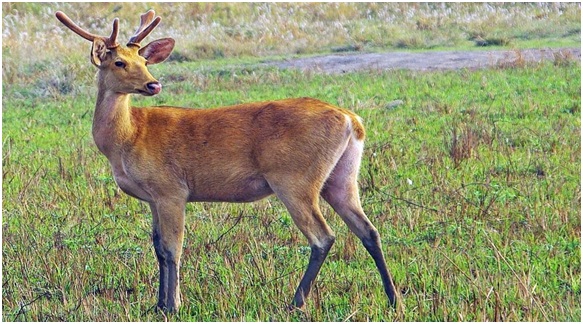
- 05 Oct 2023
Why in the News?
Manas National Park & Tiger Reserve recently shared some good news: The number of swamp deer in the park has increased.
About Swamp deer:
- Swamp deer, also known as barasingha (scientifically called Rucervus duvaucelii), is a type of deer found in the Indian subcontinent.
- They belong to the Cervidae family and are typically spotted in open forests and grasslands across India and Nepal.
- These deer primarily feed on wetland plants and the herbs commonly found in their natural habitat.
- Unfortunately, their population is now limited to isolated areas in Nepal, Assam, and the northern regions of India.
- Swamp deer used to exist in Bangladesh and Pakistan, but they are now extinct in both of these countries.
In the Indian Subcontinent, there are three subspecies of swamp deer:
- Western swamp deer (Rucervus duvaucelii) found in Nepal.
- Southern swamp deer (Rucervus duvaucelii branderi) found in central and north India.
- Eastern swamp deer (Rucervus duvaucelii ranjitsinhi) found in the Kaziranga and Dudhwa National Parks.
In terms of conservation, swamp deer are classified as follows:
- IUCN Red List: Vulnerable
- CITES: Appendix I
- The Wildlife Protection Act, 1972: Schedule I
Basohli Pashmina is Recognized with GI Tag (HT)
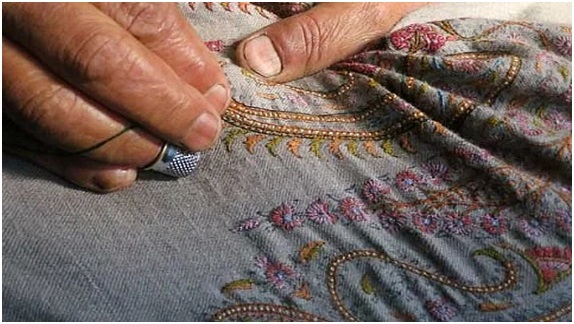
- 04 Oct 2023
Why in the News?
Recently, Basohli Pashmina, a traditional craft with over a century of history from the Kathua district in Jammu and Kashmir, has been granted the Geographical Indication (GI) tag.
About Basohli Pashmina:
- Basohli Pashmina is renowned for its exceptional softness, fineness, lightweight quality, insulation, and durability.
- Pashmina products include shawls, mufflers, blankets, and baskets.
- Pashmina is a premium variety of cashmere, obtained from the fine undercoat of the Changthangi mountain goats.
- These goats are found on the Changthang Plateau in Tibet and parts of Ladakh.
- The Changpa people, who are nomads living on the Changthang plateau of Tibet, are traditional producers of pashmina wool.
International Coral Reef Initiative (NewsOnAIR)

- 04 Oct 2023
Why in the News?
Recently, the International Coral Reef Initiative (ICRI) announced its commitment to obtain both public and private investments to support the conservation and restoration of coral ecosystems.
About the International Coral Reef Initiative:
- It was established in 1994 with founding members including Australia, France, Japan, Jamaica, the Philippines, Sweden, Britain, and the United States.
- It now boasts a membership of 45 countries, collectively representing three-quarters of the world's coral reefs.
- India is one of these member countries.
- This initiative serves as a global partnership between nations and organizations dedicated to preserving coral reefs and their related ecosystems worldwide.
- It's important to note that the decisions made by ICRI are not legally binding on its members.
- ICRI's work is frequently recognized in United Nations documents, emphasizing its significant role in cooperation, collaboration, and advocacy on the international stage.
Objectives of ICRI include:
- Promoting the adoption of best practices for sustainable management of coral reefs and associated ecosystems.
- Building capacity to effectively manage and protect these ecosystems.
- Raising awareness at all levels about the challenges faced by coral reefs worldwide.
United Nations Conference on Trade and Development (UNCTAD) (DownToEarth)
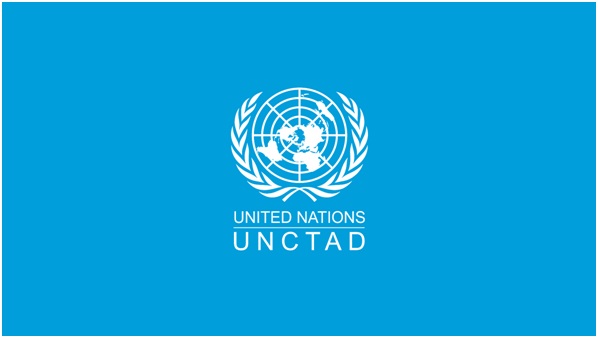
- 03 Oct 2023
Why in the News?
As per the United Nations Conference on Trade and Development's Review of Maritime Transport 2023, international shipping witnessed a notable increase of 20 percent in greenhouse gas (GHG) emissions in 2023 compared to the previous decade.
Key Highlights from the Review:
- The shipping industry plays a pivotal role, accounting for over 80 percent of global trade volume, yet contributes nearly three percent of total global greenhouse gas emissions.
- Containerized trade, after a 3.7 percent decline in 2022, is projected to grow by 1.2 percent in 2023 and is expected to further expand by three percent from 2024 to 2028.
- Oil and gas trade exhibited robust growth in 2022, with tanker freight rates experiencing a significant resurgence driven by geopolitical developments.
About the United Nations Conference on Trade and Development (UNCTAD):
- UNCTAD serves as the United Nations' primary institution addressing trade and development matters.
- Established in 1964 by the United Nations General Assembly, it functions as a permanent intergovernmental body.
- UNCTAD's mission is to promote equitable and effective access to the benefits of a globalized economy for developing countries.
- It offers economic and trade analysis, fosters consensus-building, and provides technical assistance to assist developing nations in leveraging trade, investment, finance, and technology for inclusive and sustainable development.
- Headquartered in Geneva, Switzerland, UNCTAD publishes influential reports, including the Trade and Development Report, the World Investment Report, and The Least Developed Countries Report.
National Service Scheme Awards (PIB)
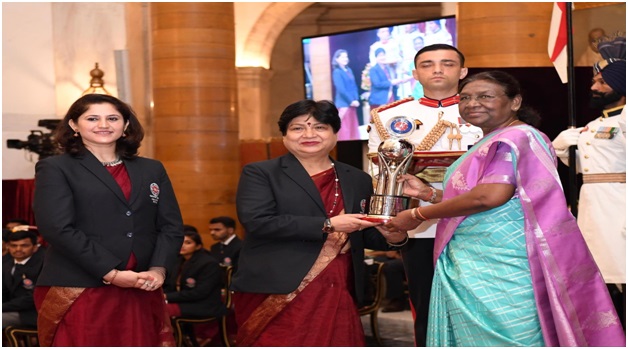
- 03 Oct 2023
Why in the News?
Recently, the President of India conferred the National Service Scheme Awards for the period 2021-2022 at Rashtrapati Bhavan.
About the National Service Scheme Awards:
- Established in 1993-1994, the National Service Scheme Awards have been an annual tradition since their inception.
- These awards are bestowed by the Ministry of Youth Affairs & Sports, Department of Youth Affairs.
- Objectives:
- Acknowledge exceptional contributions of NSS student volunteers, NSS Programme Officers, and Programme Coordinators in community service.
- Encourage young NSS student volunteers to develop their personalities through community engagement.
- Applaud the efforts of Programme Officers and Programme Coordinators in fulfilling the goals of the National Service Scheme through NSS volunteers.
- Motivate NSS Volunteers to continue their selfless service in community work.
What is the National Service Scheme?
- The National Service Scheme is a Central Sector Scheme initiated by the Government of India.
- It provides students in the 11th & 12th grade at the +2 Board level, as well as students at technical institutions, colleges, and universities, the opportunity to participate in government-led community service activities and programs.
- Motto: The guiding motto of the National Service Scheme is 'NOT ME BUT YOU.'
- Nodal Ministry: The Ministry responsible for overseeing the National Service Scheme is the Ministry of Youth Affairs & Sports.
FINANCIAL ACTION TASK FORCE (FATF) (Business Standard)
- 31 Oct 2023
What is the News ?
The Financial Action Task Force (FATF), an inter-governmental body that sets anti-money laundering standards, has removed the offshore tax haven Cayman Islands from its ‘grey list’.
Facts About:
- The Financial Action Task Force (FATF) is an intergovernmental organization that was founded in 1989 as part of the G7's effort to develop laws to combat money laundering.
- Its directive was extended to cover financing of terrorism in 2001.
- Only a few nations are listed in the grey and black lists that the FATF releases.
- To monitor the country's progress in combating money laundering and terrorism financing, a grey list is established.
- Non-cooperative nations are included on a blacklist in an effort to combat money laundering and financing of terrorism.
About the Cayman Islands:
- The Cayman Islands are situated in the Western Caribbean Sea and are a British Overseas Territory.
- Grand Cayman, Cayman Brac, and Little Cayman are the three islands that make up the territory; they are situated northwest of Jamaica and south of Cuba.
- Its topography is low-lying, with coral reefs.
- Economy: The islands are a thriving offshore financial hub, with a mixed economic system.
NATIONAL TIGER CONSERVATION AUTHORITY (NTCA) (PIB)
- 29 Oct 2023
What is the News ?
The National Tiger Conservation Authority (NTCA) is holding an art exhibition in New Delhi from November 3–5, 2023, titled "Silent Conversation: From Margins to the Center."
Facts About:
- The National Tiger Conservation Authority (NTCA) has been constituted under section 38 L (1) of the Wildlife (Protection) Act, 1972.
- It is a statutory body, established in 2006 under the Ministry of Environment, Forest, and Climate Change (MoEFCC).
Objectives:
- Providing statutory authority to Project Tiger so that compliance with its directives becomes legal.
- Fostering Center-State accountability in Tiger Reserve management by providing a foundation for MoUs with states within the federal structure.
- Including a provision for parliamentary oversight.
- Addressing the livelihood interests of local residents in areas surrounding Tiger Reserves.
- Members of NTCA:
Minister in charge of MoEFCC (as Chairperson),
Minister of State in MoEFCC (as Vice-Chairperson),
Three members of Parliament, the Secretary (MoEFCC), and other members.
UNITED NATIONS FORUM ON FORESTS (PIB)
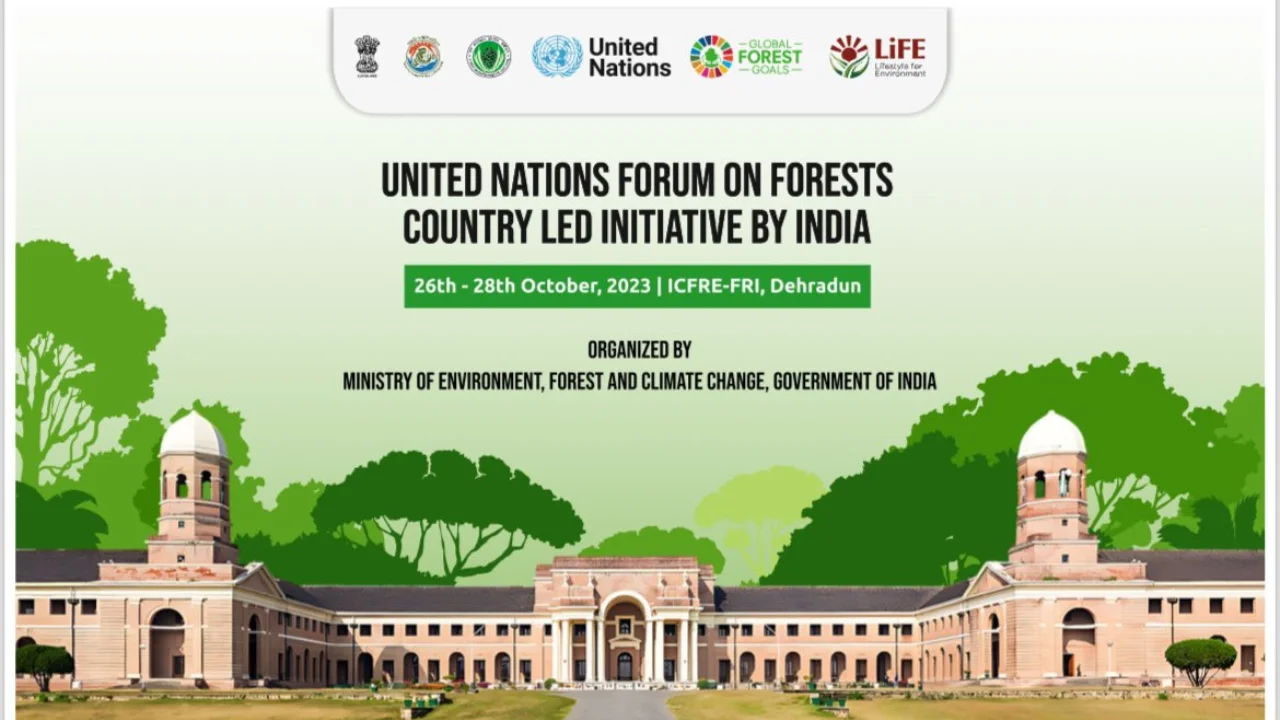
- 26 Oct 2023
What is the News ?
The United Nations Forum on Forests (UNFF) will organise a Country-Led Initiative (CLI) event hosted by the Ministry of Environment, Forests, and Climate Change from October 26–28, 2023, at the Forest Research Institute (FRI), Dehradun, Uttarakhand.
Facts About:
- It encourages the sustainable development, preservation, and management of all kinds of forests.
- The UNEconomic and Social Council of the United Nations (ECOSOC) was founded it in 2000.
- Every year, the Forum gathers at the UN Headquarters in New York to discuss high-level policy issues in even years and technical issues in odd years, bringing together representatives of all member states and agencies with an interest in forests.
- All United Nations members as well as specialized agencies make up the forum, which has universal membership.
- India is one of UNFF's founding members.
The Central Consumer Protection AuthoRITY (CCPA) (The Hindu)
- 25 Oct 2023
What is the News ?
The Central Consumer Protection Authority (CCPA), has sent notices to 20 IAS coaching institutes across the country for issuing “misleading” advertisements.
Facts About:
CCPA is a regulatory authority set up under Section 10(1) of the Consumer Protection Act, 2019 and came into force on 20th July, 2020.
The Ministry of Consumer Affairs is the nodal ministry.
Composition:
- It will be led by a Chief Commissioner, with only two other commissioners as members, one of whom will deal with goods cases and the other with services cases.
- There will be a Director General in charge of the CCPA's Investigation Wing.
- Additionally, District Collectors will have the authority to look into claims of consumer rights abuses, unfair business practices, and deceptive or false advertising.
The goal is to promote, protect, and enforce the rights of consumers as a group.
- It will be given the authority to: conduct investigations into violations of consumer rights and file complaints/prosecute violators.
- Order the recall of dangerous goods and services, the cessation of unfair trade practices and misleading advertisements, and the imposition of penalties on manufacturers, endorsers, and publishers of misleading advertisements.
INTERNATIONAL MIGRATION OUTLOOK 2023 (Down to Earth)
- 25 Oct 2023
What is the News ?
Recently, the Organization for Economic Co-operation and Development (OECD), published the "International Migration Outlook 2023."
Facts About:
- In 2021 and 2022, India had the largest migration flows to nations that are members of the Organization for Economic Co-operation and Development (OECD).
- In terms of citizenship, 0.13 million Indians became citizens of an OECD nation in 2021.
- The ongoing conflict between Russia and Ukraine has caused the greatest level of internal displacement and refugee inflows into the OECD, with over 10 million people becoming internally displaced or refugees.
- In terms of workers, migration flows from India (+172 percent), Uzbekistan (+122 percent), and Turkey (+240 percent) increased dramatically, making them the primary countries of origin after Ukraine.
About the Organization for Economic Co-operation and Development (OECD):
- The OECD is an international group of 38 countries that aims to foster economic development, and cooperation, and combat poverty by promoting economic stability.
- It was founded in 1961, by 18 European nations, the United States, and Canada.
Its headquarters are in Paris, France.
- Primary Goal: The primary goal of the OECD is to create policies that promote prosperity, equality, opportunity, and well-being for everyone.
- They produce economic reports, data, and predictions about global economic growth.
- The OECD also works to combat bribery and financial crimes worldwide, maintaining a list of uncooperative tax havens.
- India is not a member of the OECD, but a key economic partner.
TRIBAL COOPERATIVE MARKETING DEVELOPMENT FEDERATION (TRIFED) (PTI)
- 23 Oct 2023
What is the News ?
The Union Tribal Affairs Ministry on Saturday declared "null and void" the suspension of the managing director of TRIFED.
Facts About:
The Tribal Cooperative Marketing Development Federation (TRIFED) is a national-level organization operating under the Ministry of Tribal Affairs.
Its primary focus is on the development and marketing of tribal handicrafts and natural products.
Established in 1987, it became registered under the Multi-State Cooperative Societies Act, 1984 (now the Multi-State Cooperative Societies Act, 2002).
TRIFED's main objectives include enhancing the capabilities of tribal communities, promoting their products, and creating marketing opportunities to ensure better prices for tribal products, ultimately improving their income sustainably.
Some of its key goals are:
- Enhancing the socio-economic welfare of tribal communities.
- Facilitating and providing services to improve production within tribal communities.
- Offering training to enhance artistic skills using modern technology, making tribal products more competitive in the global market.
- Promoting tribal art and crafts to provide a stable livelihood.
- Identifying target groups, monitoring activities, and providing input to the Ministry.
Under retail marketing, TRIFED is responsible for marketing of tribal products under the brand name "TRIBES INDIA."
It promotes and establishes a sustainable market through retail outlets, exhibitions like Aadishilp, Aadichitra, and OCTAVE, international fairs, and e-marketing.
The Government of India has also entrusted TRIFED with the implementation of the Minimum Support Price Scheme for Minor Forest Produce.
Headquarter: New Delhi
It continues to operate a system of Regional Offices throughout India and a collection of TRIBES INDIA Retail Outlets.
GLOBAL COOLING COALITION (The Hindu)
- 23 Oct 2023
What is the News ?
The United Arab Emirates is leading the Global Cooling Pledge alongside the United Nations Environment Programme's (UNEP) Cool Coalition during the COP28 Presidency.
Facts About:
- The Global Cool Coalition is a unified front that connects action across the Kigali Amendment, Paris Agreement, and Sustainable Development Goals (SDGs).
- The aim is to increase aspiration, find solutions, and mobilize action to hasten the transition to clean and effective cooling.
- In addition to the UN, the Kigali Cooling Efficiency Program, the Climate and Clean Air Coalition, and Sustainable Energy for All (SEforALL) all support it.
- It is composed of leaders from civil society, academia, and government from countries like Chile, Rwanda, and Denmark.
Why is it necessary?
- 2020 was the hottest year on record for the entire planet, after 2019, 2018, 2017, and 2015.
- By 2050, there will be 4.5 billion air conditioning units installed worldwide as a result of rising incomes and urbanization; India may account for one billion of those units.
- India's cooling demand will more than double in the next 20 years, with air conditioners alone consuming more than half of the total energy required for cooling in the country by 2037-38.
- The Union Environment Ministry in India has already launched a national cooling action plan on March 8, 2019.
UNITED NATIONS WORLD TOURISM ORGANISATION (UNWTO) (PIB)
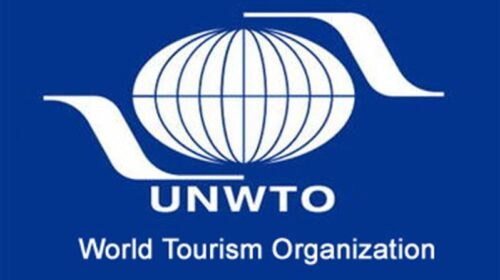
- 21 Oct 2023
What is the News ?
The Dhordo village in Gujarat's Kutch district was recently recognized as the Best Tourism Village by the United Nations World Tourism Organization (UNWTO), which was praised by India's Prime Minister.
Facts About:
- The United Nations World Tourism Organization (UNWTO) is a specialized agency of the United Nations responsible for promoting sustainable and responsible tourism on a global scale.
- Its functions include acting as a global forum for tourism policy issues and encouraging the adoption of the Global Code of Ethics for Tourism.
It was founded in 1975.
- Members: 159 countries are members of the UNWTO.
- Arabic, Chinese, English, French, Russian, and Spanish are the UNWTO's official languages.
- Structure of the organization:
The World Tourism Organization's General Assembly is the organization's main meeting.
It is made up of full members and associate members. It convenes every two years.
- The Executive Council serves as the UNWTO's governing body.
It is made up of 35 members, one for every five full members, who are elected by the General Assembly. It holds at least two meetings per year.
- Headquarters are in Madrid, (Spain).
Global Innovation Index 2023 (PIB)
- 29 Sep 2023
What is the News ?
India maintains its position at the 40th rank among 132 economies in the Global Innovation Index for the year 2023..
Facts About:
- Published by the World Intellectual Property Organization (WIPO).
- Serves as a valuable tool for governments worldwide to evaluate the impact of innovation on social and economic development in their nations.
- The India Launch of GII 2023 is being virtually hosted on September 29, 2023, by NITI Aayog in collaboration with the Confederation of Indian Industry (CII) and WIPO.
Key Insights:
- The Global Innovation Index relies on a diverse dataset, incorporating 80 indicators from international public and private sources, offering a comprehensive view of innovation beyond conventional measures.
- Top 5 countries in the ranking include Switzerland, Sweden, the United States, the United Kingdom (4th), and Singapore (5th).
- India is recognized among the 21 economies that have consistently outperformed in innovation relative to their level of development for the 13th consecutive year.
- The report highlights India, Iran, the Philippines, Turkey, Vietnam, and Indonesia as economies within the GII top 65 that have made significant ranking improvements over the last decade.
- Within the Central and Southern Asia region, India secures top positions in categories such as Human capital and research (48th), Business sophistication (57th), and Knowledge and technology outputs (22nd).
- Prominent indicators for India encompass ICT services exports (5th), Venture capital received (6th), Graduates in science and engineering (11th), and Global corporate R&D investors (13th).
Gems and Jewellery Export Promotion Council (GJEPC) (Indian Express)
- 29 Sep 2023
What is the News ?
The Gems and Jewellery Export Promotion Council (GJEPC) has made a plea to the diamond industry, urging them to halt the importation of rough diamonds.
Facts About:
- GJEPC serves as the apex organization representing India's Gem and Jewellery industry, operating under the sponsorship of the Ministry of Commerce & Industry, Government of India.
- Primary Role: The Council's primary mission is to introduce Indian gem and jewellery products to global markets and facilitate their exports.
It achieves this by furnishing its members with crucial information on foreign trade inquiries, trade regulations, tariff rates, and updates on jewellery fairs and exhibitions.
- Location: Headquartered in Mumbai, Maharashtra, GJEPC maintains a presence through regional offices nationwide, boasting a membership exceeding 7,500.
Additional Functions:
- Collaborating in international jewellery showcases.
- Encouraging countries to explore opportunities for cooperation in the supply of rough diamonds, colored gemstones, and finished jewellery.
- Identifying potential partners and buyers in international markets through buyer-seller meetings.
- Administering the Kimberly Process Certification Scheme as India's Nodal Agency.
- Advocating for export-related matters with the Government, Ministries, Regulatory Authorities, and Agencies.
- Conducting image-building campaigns via international advertisements, publications, and audio-visuals.
- Establishing training institutes across six cities (Mumbai, Delhi, Surat, Jaipur, Varanasi, and Udupi) to impart manufacturing skills and promote technical and design excellence.
- Initiating the establishment of Jewellery Parks throughout the country.
Foreign Contribution Regulation Act (FCRA) (Indian Express)
- 28 Sep 2023
What is the News ?
The Ministry of Home Affairs (MHA) has made changes to the regulations for Non-Governmental Organizations (NGOs) registered under the Foreign Contribution Regulation Act (FCRA). They now require these NGOs to furnish information about assets, both movable and immovable, that have been established using foreign funds in their annual returns.
Facts About:
- FCRA is a law governing foreign contributions, especially monetary donations, to NGOs and entities in India.
- Originally passed in 1976 and significantly amended in 2010.
- Aims to prevent foreign organizations from influencing India's politics, society, economy, or religion for harmful purposes.
- Administered by the Ministry of Home Affairs (MHA).
- Defines 'foreign contribution' as donations, currency, or securities from foreign sources.
- Allows individuals, associations, companies, and others to receive foreign contributions with FCRA registration.
- Funds must be used for the intended purpose, with a maximum of 20% for administrative expenses.
- Requires NGOs to open a designated bank account with the State Bank of India, Delhi.
- Registration is mandatory for NGOs and can be renewed if they meet requirements.
- Cancellation is possible for false statements or illegal activities.
- Suspension and fund-freezing authority were also granted to the Ministry.
- Challenges to government orders can be filed in the High Court.
Promotion of Research and Innovation in Pharma (PRIP) scheme (PIB)
- 27 Sep 2023
What is the News ?
The Indian Government, led by the Minister of Chemicals and Fertilizers and the Minister of Health & Family Welfare, has just introduced a new program called PRIP. This program aims to support and encourage research and innovation in the Pharma and MedTech sectors.
Facts About:
- The PRIP scheme has a clear goal: to shift the Indian pharmaceutical sector from being focused on costs to being driven by innovation.
This means we want to encourage more research and new ideas in the country.
- Aim: We want to create stronger connections between industries and educational institutions to do research in important areas.
This will help us build a culture of high-quality research and support our scientists.
- By doing this, we hope India will be more competitive on the global stage, and it will also create better job opportunities.
- How Long It Will Last: This program will run for five years, from 2023-24 to 2027-28.
- The Scheme Has Two Parts:
Part A: We will invest Rs 700 Crores to set up 7 Centers of Excellence (CoEs) at the National Institutes of Pharmaceutical Education and Research (NIPERs). These will focus on specific areas of research.
Part B: We will support research in six important areas like new medicines, complex generics, medical devices, stem cell therapy, rare disease drugs, and fighting against drug resistance. This will also include helping industries, small businesses, startups, and academic research.
- Total Budget: The program has a total budget of Rs. 4250 Crores.
- This scheme is all about making pharmaceutical research in India stronger and more innovative.
- It will support researchers and industries working on important health-related projects.
Mukurthi National Park (The Hindu)
- 26 Sep 2023
What is the News ?
The Tamil Nadu Forest Department carried out thorough operations in Mukurthi National Park and the nearby forest areas to prevent any unlawful entry of individuals and deter poaching activities.
Facts About:
- Mukurthi National Park is situated in the western part of the Nilgiris Plateau, in the northwest corner of Tamil Nadu.
- This park was established primarily to safeguard its key species, the Nilgiri tahr.
- The park is crossed by the Pykara and Kundah rivers, and it's home to several streams that originate within the park and flow into the Bhavani Puzha River.
- It holds the prestigious status of being a UNESCO World Heritage Site.
- In terms of its vegetation, the park features high-altitude montane grasslands and shrublands with shola forests, in an area with ample rainfall.
- You can find various plants in the park, including fragrant shrubs like Gaultheria fragrantissima, Helichrysum, and Berberis. Other notable plants include Rhododendrons, Cinnamon, Mahonia, Satyrium, and Raspberries.
- As for wildlife, Mukurthi National Park is a sanctuary for endangered species such as the Nilgiri tahr, Indian elephants, Nilgiri Langur, Bengal tiger, and bonnet macaque, among others.
World Federation for Medical Education (WFME) (Indian Express)
- 23 Sep 2023
What is the News ?
The National Medical Commission (NMC) of India has recently earned a 10-year recognition status from the World Federation for Medical Education (WFME).
Facts About:
WFME is a worldwide organization dedicated to the training and education of medical doctors.
Their mission is to work towards better healthcare for all people.
WFME's primary goal is to elevate the quality of medical education on a global scale by promoting the highest scientific and ethical standards.
They achieve this goal through several means, including:
- Establishing standards in medical education
- Advocating for the accreditation of medical schools
- Developing databases related to medical education
- Initiating projects focused on the future of medicine and medical education
- Publishing informative materials and forming partnerships
WFME was established in 1972 and has its headquarters in Ferney-Voltaire, France.
Notably, WFME is the organization that officially represents medical teachers and medical teaching institutions on a global scale, serving as their voice before the World Health Organization (WHO).
WFME's accreditation program plays a crucial role in ensuring that medical institutions meet and uphold the highest international standards in education and training.
General Crop Estimation Survey Portal (PIB)
- 23 Sep 2023
What is the News ?
The Secretary of the Department of Agriculture and Farmers Welfare (DA&FW) recently launched the mobile application and web portal for the General Crop Estimation Survey (GCES).
Facts About:
- This innovative portal and mobile application aim to revolutionize agricultural practices across the nation.
- The Department of Agriculture and Farmers' Welfare has developed this technology-driven solution to expand the reach, scope, and effectiveness of government initiatives in the development process.
- Automating the GCES process ensures timely reporting of crop statistics and data accuracy.
Key Features:
- Comprehensive Information: The portal and app serve as a complete repository of yield estimates, encompassing village-specific GCES plans, plot details where crop cutting experiments occur, and post-harvest crop and driage weights.
- Geo-referencing: The mobile app offers a crucial feature that allows field workers to define the boundaries of experimental plots and upload photos of both the plots and the crops within them.
- This feature enhances data transparency and accuracy.
Promotion of Tribal Products for North East Region’ (PTP-NER 2.0) scheme (PIB)
- 22 Sep 2023
What is the News ?
The Tribal Cooperative Marketing Development Federation of India Ltd. (TRIFED), under the Union Ministry of Tribal Affairs, is set to launch the second phase of the 'Promotion of Tribal Products for the North East Region' (PTP-NER 2.0) scheme, running from September 21 to November 10, 2023.
Facts About:
This scheme, launched by the Ministry of Tribal Affairs, aims to enhance the livelihoods of tribal artisans by improving the procurement, logistics, and marketing of their products.
It covers the states of Arunachal Pradesh, Assam, Manipur, Meghalaya, Mizoram, Nagaland, Tripura, and Sikkim.
The scheme has two phases:
- Phase 1 included 8 states and 38 districts, with 64 Tribal Artisans Empanelment Melas (TAeM) organized by TRIFED and NEHHDC.
- Phase 2 will cover 29 districts, continuing the effort to support tribal artisans and showcase their cultural heritage.
Implementing partners include the North Eastern Handicrafts and Handlooms Development Corporation (NEHHDC), India Post, and various North Eastern State Government Departments and Agencies.
India Post will provide logistical support to achieve the scheme's objectives.
Digital Personal Data Protection Act, 2023 (The Hindu)
- 22 Sep 2023
What is the News ?
The Central Government has announced that companies and entities may have approximately one year to comply with the regulations outlined in the Digital Personal Data Protection (DPDP) Act, 2023. Smaller organizations or startups might be granted even more time for compliance.
Facts About:
The DPDP Act is a legal framework in India designed to protect individuals' personal data and ensure it's only shared with their consent. It governs the processing of digital personal data to safeguard privacy in the digital age.
Applicability:
- It applies to digital personal data processed within India, regardless of its origin (online or offline).
- It also applies to data processing outside India if it involves offering goods or services to Indian data subjects.
Evolution:
- It originates from the recommendations of the Justice BN Srikrishna-led Expert Committee, leading to the introduction of the Personal Data Protection Act in 2019.
- After consultations and revisions, the Digital Personal Data Protection Act, 2023, was enacted by both houses of Parliament.
Key Stakeholders:
- Data Principal (DP): The data owner who must give consent for data generation and processing.
- Data Fiduciary: The entity collecting, storing, and sharing data, acting as a "Consent Manager."
- Data Processor: The entity processing data on behalf of a data fiduciary.
- Data Protection Officer (DPO): An individual appointed by a data fiduciary to oversee data protection compliance.
Individuals have rights such as the right to information, correction, erasure, grievance redressal, and the right to nominate someone to exercise these rights in case of incapacity or death.
Pandit Deendayal Upadhyay National Welfare Fund For Sportspersons (PDUNWFS) (PIB)
- 21 Sep 2023
What is the News ?
The Union Minister for Youth Affairs & Sports honored athletes supported by the Pandit Deendayal Upadhyay National Welfare Fund for Sportspersons (PDUNWFS) in New Delhi.
Facts About:
- The Pandit Deendayal Upadhyay National Welfare Fund for Sportspersons (PDUNWFS) was established in March 1982.
- Its primary goal is to support former exceptional athletes who are now facing financial hardship but had previously brought honor to India through their sporting achievements.
- In May 2016, the scheme underwent revisions, enabling it to provide one-time financial assistance to former exceptional athletes.
- This scheme covers athletes across the entire nation and is designed to enhance the well-being of sportspersons and their families by alleviating financial distress.
- The scheme can be applied to individual athletes or groups of active sportspersons.
Operation Sajag (PIB)
- 20 Sep 2023
What is the News ?
The Indian Coast Guard has recently carried out 'Operation Sajag,' a Coastal Security Exercise along the Western Coast.
Facts About:
- Operation Sajag is a coastal security exercise conducted by the Indian Coast Guard along the western coastline.
- It involves the participation of all stakeholders responsible for Indian coastal security.
- A total of 118 ships, including vessels from Customs, Marine Police, Ports, and the Indian Navy, took part in this exercise.
- The primary goals of this drill are to reassess and strengthen the coastal security system and raise awareness among fishermen operating at sea.
- During the exercise, there was extensive checking and verification of documents and crew passes for all fishing boats, barges, and crafts at sea.
- Additionally, biometric card readers have been provided to security agencies to enhance security measures.
- Apart from monitoring dhows, the coastal security construct also includes initiatives related to island security and community interaction programs.
Anamudi Shola National Park (The Hindu)
- 19 Sep 2023
What is the News ?
The Pazhathottam region within Anamudi Shola National Park, close to Munnar in Idukki, has blossomed into a lush paradise bustling with vibrant life.
Facts About:
- Location: Situated in Kerala, India.
- Surrounded by Eravikulam National Park, Pampadum Shola National Park, Chinnar Wildlife Sanctuary, and Mathikettan Shola Park.
- Vegetation: Encompasses southern subtropical hill forests, southern montane wet temperate forests, and moist deciduous forests.
- Unique Features: The dense shola woods here contain stunted trees and are adorned with lush lichen, mosses, and climbers.
- Flora: Houses approximately 174 species of herbs and shrubs, 62 tree species, and around 40 species of climbers, some of which are unique to the region.
- Fauna: Abode to diverse wildlife, including leopards, civet cats, wolves, Indian bison, wild boars, elephants, tigers, panthers, and sloth bears.
International Organisation of Legal Metrology (OIML) (Indian Express)
- 16 Sep 2023
What is the News ?
Recently, the Secretary of the Union Ministry of Consumer Affairs announced that India has achieved the status of being an OIML certificate-issuing authority.
Facts About:
- OIML, short for the International Organisation of Legal Metrology, was established in 1955 as an international body.
- Its primary role is to develop model regulations, standards, and related documents that are used by legal metrology authorities and industry worldwide.
- OIML plays a vital part in aligning national laws and regulations concerning the accuracy of measuring instruments such as clinical thermometers, alcohol breath analyzers, radar speed measuring devices, ship tanks at ports, and petrol dispensing units.
- India joined the OIML in 1956 and simultaneously signed the metric convention.
- Headquartered in Paris, France.
National Judicial Data Grid (NJDG) portal (PIB)
- 15 Sep 2023
What is the News ?
Recently, the Chief Justice of India declared the inclusion of the Supreme Court in the National Judicial Data Grid (NJDG) during a public court session.
Facts About:
- The National Judicial Data Grid (NJDG) portal serves as a comprehensive national database for tracking cases in courts throughout India.
- It provides access to case-related information and statistics, including the number of cases filed, pending, and resolved, as well as case types and year-wise data for the Supreme Court of India.
- The NJDG portal is part of the e-Courts Project and covers 18,735 District & Subordinate Courts and High Courts.
- Developed by the National Informatics Centre (NIC) in collaboration with the Computer Cell, Registry's software development team, the NJDG portal features an interactive interface and analytics dashboard.
- It is regularly updated with current case data and serves as a valuable tool for monitoring and managing case backlogs, supporting policy decisions to expedite case resolution, and improving overall court performance.
- Additionally, it aids in tracking land dispute cases.
Data-driven Innovations in Agriculture (PTI)
- 15 Sep 2023
What is the News ?
The National Bank for Agriculture and Rural Development (Nabard) has teamed up with the United Nations Development Programme (UNDP) in India to jointly develop data-driven innovations for the benefit of smallholder farmers in agriculture and food systems.
Facts About:
- This partnership aims to improve the well-being of smallholder farmers by jointly using open-source data for product development, technology transfer, and policy formulation.
- It focuses on enhancing climate resilience in agriculture and involves sharing collaborative digital resources like DiCRA (Data in Climate Resilient Agriculture).
- DiCRA offers access to essential geospatial data related to climate-resilient agriculture and is curated by UNDP and partner organizations.
- This collaboration represents a significant opportunity to harness data and present it as a digital public infrastructure for India's rural farming community.
- Such open data innovations can promote best practices, optimize agricultural investments, and bolster the resilience of smallholder farmers, including women, against various challenges.
Self Regulatory Organisation for Fintech (Indian Express)
- 12 Sep 2023
What is the News ?
Recently, the Governor of the Reserve Bank of India (RBI) has requested fintech organizations to establish a Self-Regulatory Organization (SRO).
Facts About:
- A Self-Regulatory Organization is an independent entity, not affiliated with the government, responsible for formulating and enforcing industry-specific rules and standards that govern the behavior of its member entities.
- The primary objectives are safeguarding customers' interests and fostering a culture of ethics, fairness, and professionalism within the industry.
Key Functions of an SRO:
- Facilitating Communication: A recognized SRO serves as a vital bridge for communication between its members and the Reserve Bank of India (RBI).
This ensures a seamless flow of information and feedback.
- Setting Standards: SROs play a pivotal role in establishing and upholding minimum benchmarks and standards.
This helps in cultivating professional and ethical conduct among their member entities.
- Education and Awareness: SROs contribute to enhancing industry expertise by providing training to the staff of their members and other relevant stakeholders.
They also organize awareness programs to disseminate knowledge.
- Grievance Resolution: An important function of an SRO is to create a uniform framework for addressing grievances and managing disputes across its member organizations, promoting fairness and transparency.
Zero Draft Plastic Pollution Treaty (Down to Earth)
- 08 Sep 2023
What is the News ?
The second session of the Intergovernmental Negotiating Committee (INC) concluded with member states instructing the INC secretariat to create an initial draft aimed at putting an end to plastic pollution, including in marine ecosystems.
Facts About:
- This is a globally binding agreement designed to put an end to plastic pollution, especially in marine ecosystems.
- The zero draft consists of ten sections covering topics such as the preamble, definitions, principles, scope, institutional arrangements, and final provisions.
- During INC-2, member states like Saudi Arabia, Iran, China, and India emphasized the significance of clearly defining the scope of this legally binding instrument.
Competition Commission of India (CCI) (TOI)
- 08 Sep 2023
What is the News ?
The Competition Commission of India has recently unveiled preliminary rules for overseeing mergers and acquisitions involving significant India-based operations, particularly those in the technology sector, thereby extending the authority of the antitrust regulator.
Facts About:
- CCI is a government-established statutory body founded in March 2009 under the Competition Act, 2002.
- The primary objective of CCI is to foster fair competition in the economy, ensuring a level playing field for producers and promoting market dynamics that benefit consumers.
- The Commission's key focus areas include eradicating practices detrimental to competition, fostering and maintaining competitive environments, safeguarding consumer interests, and upholding the freedom of trade in India's markets.
Mandate: CCI enforces the provisions of The Competition Act, 2002, which:
- Prohibits anti-competitive agreements and the abuse of dominant positions by enterprises.
- Regulates mergers and acquisitions (M&A) that could potentially harm competition within India. Hence, deals exceeding certain thresholds require clearance from CCI.
- Monitors the activities of large enterprises to ensure they do not misuse their 'dominant position' by controlling supply, setting high purchase prices, or engaging in unethical practices that may harm emerging businesses.
Composition: CCI functions as a quasi-judicial body, consisting of one chairperson and six additional members, all appointed by the Central Government.
Headquarters: The Commission is headquartered in New Delhi.
Nation First Transit Card (The Hindu)
- 08 Sep 2023
What is the News ?
The State Bank of India has introduced the 'Nation First Transit Card.' It's a prepaid RuPay card that falls under the National Common Mobility Card (NCMC) program, allowing you to use it anywhere in the country.
Facts About:
- This card is designed to make your commuting experience smooth and convenient.
- You can use it to pay for tickets on metros, buses, water ferries, and even parking with just one card.
- Plus, it's not just for transportation; you can also use it for shopping online and in stores.
- What makes it work is the technology behind it. It's powered by RuPay and National Common Mobility Card (NCMC) tech.
Important Facts About National Common Mobility Card (NCMC):
- With NCMC, you can use your Bank's Debit Cards as travel cards for Metro Rail and Buses in places where it's available.
- The idea for NCMC came from a committee led by Nandan Nilekani, set up by the Reserve Bank of India (RBI).
- NCMC is an initiative by the Ministry of Housing and Urban Affairs in India. Its goal is to promote cashless transactions and provide a single payment platform for commuters. It was launched on March 4, 2019.
- It offers a unified contactless transport solution through the RuPay platform, which is developed by the National Payments Corporation of India (NPCI).
- NCMC is like a magic card that can turn your smartphone into a transport card. You can use it to pay for Metro, bus, and suburban railway services.
Financial Action Task Force (Deccan Herald)
- 02 Sep 2023
What is the News ?
India has suggested to all G20 nations to actively cooperate to deal comprehensively and efficiently with fugitive economic offenders as part of the action against them and recovery of the assets.
Facts About:
- The FATF is an international organization made up of governments that focuses on creating policies and standards to combat money laundering and terrorist financing.
- Objective: Its main goal is to establish global standards and encourage the development of policies at both national and international levels to prevent money laundering and the financing of terrorism.
- The FATF provides recommendations to combat financial crimes, assesses its member countries' policies and procedures, and strives to promote the adoption of anti-money laundering regulations worldwide.
- Formation: The FATF was established in 1989 during the G7 Summit in Paris with the initial aim of addressing money laundering. In 2001, its scope expanded to include combating terrorism financing.
- Headquarters: Its headquarters are located in Paris, France.
- Membership: The FATF comprises 39 member countries, including the United States, India, China, Saudi Arabia, Britain, Germany, France, and the European Union.
- India became a member in 2010.
- As part of its efforts, the FATF maintains two lists: the blacklist and the greylist.
Black List:
- The blacklist contains countries referred to as Non-Cooperative Countries or Territories (NCCTs). These are countries known for supporting terrorism funding and money laundering activities.
- The FATF regularly updates this list, adding or removing countries as needed.
Grey List:
- The grey list includes countries considered to be safe havens for supporting terrorism funding and money laundering. Placement on this list serves as a warning that a country may eventually be placed on the blacklist.
- Currently, three countries on the FATF blacklist are North Korea, Iran, and Myanmar.
Consequences of Being on the FATF Blacklist:
- Countries on the FATF blacklist do not receive financial aid from organizations such as the International Monetary Fund (IMF), the World Bank, the Asian Development Bank (ADB), and the European Union (EU).
- Additionally, they face various international economic and financial restrictions and sanctions.
State of Food Security and Nutrition in the World-2023 (FAO)
- 31 Aug 2023
What is the News ?
A recently published report, ‘State of Food Security and Nutrition in the World’ (SOFI) 2023, shows that the cost of a healthy diet has increased in India in recent years, but it is still lowest among the BRICS countries (including the newly added six countries) and India’s neighbours.
Facts About:
- The ‘State of Food Security and Nutrition in the World’ (SOFI) 2023 report prepared by FAO and United States agencies has been released with the theme of “Urbanisation, agrifood systems transformation, and healthy diets across the rural-urban continuum”.
- According to a UN agency report 74% of people in India can’t afford a healthy diet because of increasing costs.
‘State of Food Security and Nutrition in the World’ (SOFI) 2023 :-
The report is published by the partnership of Food and Agriculture Organisation(FAO) of the United Nations with the United States agencies i.e International Fund for Agricultural Development (IFAD), United Nations Children’s Fund (UNICEF), World Food Programme (WFP) and World Health Organisation (WHO).
The aim of the report is
- ending hunger
- achieving food security
- improving nutrition
- to provide an in-depth analysis for achieving this goal in the context of the SDG.
FAO:-Each year, FAO’s most deeply scrutinised report presents the leading numbers of undernourished people worldwide, while advocating for strategies against hunger and malnutrition.
SOFI 2023 related to India:-
PPP report:-
- The concept of PPP is 1ppp dollar in the United States should be able to buy the same amount of goods in either India or Brazil or in other countries.
- xPPP dollar per day means how much would it cost to buy a very simple healthy diet in every country.
- According to this data India compared to its other countries or other regional countries of the world itself has the lowest PPP dollar for a healthy diet.
According to another data which shows the share of the population that is unable to afford a healthy diet in 2021, for instance 74% of the Indian population cannot afford a healthy diet and the fourth highest share in the country itself .
So when it comes to afford a healthy diet, India comes fourth.
Because of stagnation, poor income levels, General stagnation, people of India are not able to afford the cheapest healthy diet in the world.
According to Above two report
- India doesn’t have to spend too much to get a healthy diet.
- 74% of our population cannot afford a healthy diet.
Conclusion:-
The share of people able to afford such a healthy diet is still low: India is at the bottom of that list because income levels are stagnant or going down.
- For example, while in mumbai the cost of meals have risen by 65% in last 5 years wages and salaries have only risen by 28% to 37% , so it shows that prices are rising but our incomes are not rising therefore though India have the cheapest food in the world there is most of people of india can’t afford it.It is not about the can’t afford food it’s a about a nutritional healthy diet divided by FAO and the UN.
Source: https://www.fao.org/documents/card/en?details=cc3017en
Kampala Declaration (Down to Earth)
- 30 Aug 2023
What is the News ?
A total of 48 African countries have now agreed to adopt the Kampala Ministerial Declarationon Migration, Environment and Climate Change (KDMECC) to address the nexus of human mobility and climate change in the continent.
Facts About:
Background: KDMECC was originally signed and agreed upon by 15 African states in Kampala, Uganda in July 2022.
The Declaration is the first comprehensive, action-oriented framework led by Member States to address climate-induced mobility in a practical and effective manner.
The KDMECC-AFRICA is expected to be signed by Member States during the Africa Climate Summit in Nairobi on September 4, 2023.
Need:
- Africa is one of the world's most vulnerable continents to the impacts of climate change.
- Climate change, which leads to an increased frequency and intensity of extreme weather events, has a direct impact on migration.
Significance:
- The Kampala Ministerial Declaration on Migration, Environment and Climate Change gives us the unprecedented opportunity to support Member State priorities in addressing the challenges while also leveraging migration for sustainable development.
- It will ensure that all voices, including those of youth, women and persons in vulnerable situations are the priority of the expanded declaration.
Linkage between Climate change and Human Rights:
- Climate change has indisputable long-term consequences on the environment, which, in turn, seriously undermine the enjoyment of human rights.
- The African continent is projected to be one of the hardest hit by the negative effects of climate change.
- The consequences of climate change are not only disproportionately felt by the most vulnerable and poorest populations; there are also disparities along gender lines.
- The connections between climate change, gender equality, and women’s rightsare complicated and multidimensional.
- In contrast, most existing studies on gender and climate change action offer a narrow conception of what gender equality and women’s rights mean in the context of climate change action.
Other similar declarations:
The Maputo Convention on the Conservation of Nature and Natural Resources: This Convention shall apply;
- To all areas which are within the limits of national jurisdiction of any Party; and
- To the activities carried out under the jurisdiction or control of any Partywithin the area of its national jurisdiction or beyond the limits of its national jurisdiction.
The Parties shall adopt and implement all measures necessary to achieve the objectives of this Convention, in particular through preventive measures and the application of the precautionary principle, and with due regard to ethical and traditional values as well as scientific knowledge in the interest of present and future generations.
Source: https://www.downtoearth.org.in/news/climate-change/kampala-declaration-on-climate-change-human-mobility-now-has-48-african-countries-as-members-91393
Food Inflation & Challenges of Malnutrition (Down to Earth)
- 30 Aug 2023
What is the News ?
According to recent data, the cost of meals rose by 65% in five years, wages by just 37% in the last five years.
Facts About:
- In Mumbai, the cost of a vegetarian thali surged 65% in five years, while income for laborers and salaried workers in urban Maharashtra increased only 37% and 28%, respectively. This discrepancy is making essential food items unaffordable, leading to compromised meals.
What is Thalinomics?
- Thalinomics is a term coined by an Indian economist and former Chief Economic Adviser to the Government of India, Arvind Subramanian.
- It refers to a concept that involves analyzing changes in the cost of a vegetarian thali (a meal consisting of a variety of dishes served on a single plate) to gain insights into the trends and dynamics of food inflation and affordability.
- It involves tracking the prices of key ingredients that constitute a thali, such as cereals, pulses, vegetables, and other essential items.
- This concept is particularly relevant in countries like India, where food affordability and inflation are significant concerns for a large population.
Key insights: A case study of Mumbai and urban Maharashtra
- Rising Cost of Thali: The cost of preparing a home-cooked vegetarian thali in Mumbai has increased significantly by 65% over the past five years. This increase is attributed to rising prices of essential ingredients like rice, dal, vegetables, and other items that constitute a thali.
- Income Growth: Over the same five-year period, the average wage earned by casual laborers in urban Maharashtra increased by 37%, while the average salary of regular salaried workers increased by 28%. These income growth rates reflect the changes in earnings for these two categories of workers.
- Disparity Between Costs and Income: While the cost of a thali increased by 65%, income growth for casual laborers and salaried workers was significantly lower, at 37% and 28%, respectively.
- Affordability Challenge: The disparity between rising costs and income growth has resulted in essential food items becoming increasingly unaffordable for households. This affordability challenge can lead to reduced portion sizes or a compromise in the variety and nutritional quality of meals.
- Impact on Budget Share: The study also analyzes the portion of monthly wages or salaries required to afford two thalis every day for a month. This share increased from 22.5% of a casual laborer’s monthly earnings in 2018 to 27.2% in 2023. For salaried employees, it increased from 9.9% to 12.8% over the same period.
- Incomplete Data: Data limitations, particularly regarding the absence of certain ingredients like spices and ghee in the analysis, This suggests that the actual cost of making a thali could be even higher than the calculated figures.
Key aspects of the relationship between thali prices and inflation
- Inflation and Ingredient Prices: The prices of ingredients like rice, dal, vegetables, and oil can be affected by inflation. If the prices of these essential ingredients rise due to inflationary pressures, the overall cost of preparing a thali would increase.
- Food Inflation: The cost of a thali, which is composed of various food items, is directly influenced by food inflation. If there’s high food inflation, it can significantly impact the affordability of thalis and other meals.
- Supply and Demand Dynamics: Inflation can be driven by supply and demand imbalances. If there’s a shortage of certain ingredients due to supply disruptions (e.g., poor harvests or transportation issues), prices can rise. Similarly, changes in consumer demand patterns can affect the prices of specific ingredients, further impacting thali costs.
- Monetary Policy: Central banks often use monetary policy tools to control inflation. Interest rate adjustments, money supply regulation, and other measures can impact inflation rates. High inflation rates can lead to increased production costs for farmers and manufacturers, which may trickle down to the prices of thali ingredients.
- Income Effects: Inflation can impact consumers’ purchasing power. When inflation outpaces income growth, households might need to allocate a larger portion of their income to cover basic expenses like food. This can particularly affect lower-income households, leading to affordability challenges for items like thalis.
- Regional Variation: Inflation rates can vary regionally and even locally. Different regions might experience different rates of inflation due to factors like supply chain disruptions, local economic conditions, and government policies.
- Government Policies: Government policies such as subsidies, import/export regulations, and agricultural policies can influence ingredient prices and, consequently, the cost of preparing a thali. These policies can impact the supply and availability of key ingredients.
Implications of the higher cost of a thali
- Nutritional Impact: The rising cost of thali ingredients can lead to compromised nutritional intake as households might cut back on certain items to manage expenses. This can result in inadequate diets and potential health implications.
- Affordability Strain: As thali prices escalate, households may face financial strain by allocating a larger portion of their income to food expenses. This can limit their ability to save, invest, and engage in non-essential expenditures.
- Dietary Diversity: Increased thali costs can potentially lead to reduced dietary diversity as households might opt for cheaper, less nutritious alternatives, affecting overall dietary quality.
- Balanced Meals: Higher thali costs might lead to smaller portions or fewer items in the thali, disrupting the balance of a typical meal and potentially impacting satiety and nutritional completeness.
- Quality of Life: Reduced dietary quality due to affordability challenges can have broader implications for individuals’ quality of life, health, and overall well-being.
- Economic Struggles: For households with limited disposable income, the burden of increased thali costs can exacerbate economic struggles and hinder progress.
Way forward
- Policy Interventions: Implement policies to address the widening gap between thali costs and income growth, ensuring that essential food remains affordable.
- Income Enhancement: Focus on raising wages for casual laborers and salaried workers to match the rising cost of thalis.
- Affordability Measures: Establish measures to mitigate the impact of expensive thalis on households, considering subsidies or targeted assistance.
- Nutrition Awareness: Launch campaigns to educate households about maintaining nutritious diets even when faced with affordability challenges.
- Gender-Inclusive Approach: Address gender disparities by formulating policies that empower women economically.
- Data-Driven Approach: Base policies on accurate and up-to-date data on food prices, wages, and consumption patterns.
- Food Security Initiatives: Strengthen food security programs to ensure access to nutritious food despite thali cost increases.
- Policy Evaluation: Continuously assess the effectiveness of policies in addressing thali affordability and overall well-being.
Conclusion
- The shifting dynamics between escalating costs and relatively stagnant income pose a serious challenge to maintaining a nutritionally balanced diet. As prices continue to rise, a more comprehensive approach is crucial to ensuring that affordable nutrition remains within reach for all strata of society.
Source: https://www.downtoearth.org.in/blog/price-of-food-inflation-42483
India-Iran drop Foreign Arbitration clause in Chabahar Port Issue (The Hindu)
- 26 Aug 2023
What is the News ?
India and Iran have agreed to pursue arbitration under rules framed by the UN Commission on International Trade Law (UNCITRAL) and will not go for commercial arbitration in foreign courts.
Facts About:
UN Commission on International Trade Law (UNCITRAL):
It is a subsidiary body of the UN General Assembly, established in 1966.
Mandate: To further the progressive harmonisation and unification of the law of international trade.
Membership:
- The Commission is composed of 60 member States elected by the General Assembly.
- The 60 member States include 14 African States, 14 Asian States, 8 Eastern European States, 10 Latin American and Caribbean States and 14 Western European and other States.
- The General Assembly elects members for terms of six years; every three years, the terms of half of the members expire.
- India is a founding member of this organisation.
Key facts about Chabahar Port
- It is a seaport in the Sistan-Balochistan province of Iran, on the Gulf of Oman, at the mouth of the Strait of Hormuz.
- It is a deep-water port with direct access to the Indian Ocean that is outside the Hormuz Strait.
- Its geographic proximity to countries such as Afghanistan, Pakistan, and India, as well as its status as a key transit centre on the burgeoning International North-South Transport Corridor.
Source: https://www.thehindu.com/news/national/india-and-iran-drop-foreign-court-arbitration-for-chabahar-port/article67234071.ece
National Medical Commission (Indian Express)
- 25 Aug 2023
What is the News ?
The National Medical Commission (NMC) has put on hold the regulations that make it mandatory for doctors to prescribe generic drugs.
Facts About:
- In light of the criticism received by the Indian Medical Association (IMA) as well as the as the Indian Pharmaceutical Alliance (IPA), the National Medical Commission put on hold the Medical Practitioner (Professional Conduct) Regulations, 2023.
- Even the country’s apex drug regulator, the Central Drugs Standard Drug Control Organisation (CDSCO), questioned the language in the notification.
- The participating bodies suggested that the guidelines be kept in abeyance until the WHO’s good manufacturing practices are implemented.
- The participants said that prescribing only generic drugs will prompt pharmacies to sell generic drugs at high-profit margins, disincentivising firms that manufacture quality branded generics
National Medical Commission:
- The National Medical Commission is a statutory body established under the National Medical Commission Act, 2019.
- The NMC replaced the erstwhile Medical Council of India (MCI) which was established in 1934.
Objectives of NMC –
- Improve access to quality and affordable medical education;
- Ensure availability of adequate and high-quality medical professionals in all parts of the country;
- Promote equitable and universal healthcare that encourages community health perspective and makes services of medical professionals accessible to all the citizens;
- Encourages medical professionals to adopt latest medical research in their work and to contribute to research;
- Objectively assess medical institutions periodically in a transparent manner;
- Maintain a medical register for India;
- Enforce high ethical standards in all aspects of medical services;
- Have an effective grievance redressal mechanism.
Composition of NMC –
- NMC is a 25-member body, majority of them being nominated by the Central government.
- Tenure of NMC members is four years (except for part-time members whose tenure is two years).
- The NMC has 11 part-time members representing states or state medical councils.
- The NMC chairpersons and other members, nominated by the Central government, cannot be renominated.
- Any decision requires approval of the majority (minimum 13 out of 25) of the Commission.
Medical Practitioner (Professional Conduct) Regulations, 2023:
- On August 2nd, the National Medical Commission had published the Medical Practitioner (Professional Conduct) Regulations, 2023 aimed at reshaping prescription practices.
- It mandated that registered medical practitioners prescribe medications using “generic”, “non-proprietary”, or “pharmacological” names.
- The guidelines define a generic drug as a “drug product that is comparable to brand/reference listed product in dosage form, strength, route of administration, quality and performance characteristics, and intended use.”
- It says branded generic drug is one which has come off patent and is manufactured by drug companies and sold under different companies’ brand names.
- The guidelines say, “Every RMP (Registered Medical Practitioner) should prescribe drugs using generic names written legibly and prescribe drugs rationally, avoiding unnecessary medications and irrational fixed-dose combination tablets.”
- The guidelines have also talked about punitive measures against those violating the directive.
- Besides the instructions on generic drugs, the NMC guidelines included directives on issues ranging from continued medical education, usage of social media platforms and maintaining a dynamic register of doctors.
- It also barred doctors from attending events sponsored by pharmaceutical companies.
- However, the NMC guidelines have not gone down well with the Indian Medical Association (IMA).
Issued Raised by the Indian Medical Association (IMA):
- The IMA issued a statement in response to the regulations introduced by the NMC.
- The IMA says the biggest impediment to generic drugs is the uncertainty about its quality.
- IMA said that the quality control in the nation being very weak, there’s practically no guarantee of the quality of drugs and prescribing drugs without assured quality would be detrimental to patient health.
- The statement added that less than 0.1% of the drugs manufactured in India are tested for quality.
- The IMA said that step should be deferred till the Government can assure the quality of all the drugs released into the market.
- The statement says patient care and safety are not negotiable.
- The IMA says it has been demanding for long that only good quality drugs should be made available in the country and prices should be uniform and affordable.
- It urges the Government to have ‘one drug, one quality, one price’ system whereby all brands should either be sold at the same price or banned and only generics allowed while ensuring highest quality of these drugs.
Source: https://indianexpress.com/article/india/nmc-hold-regulations-mandating-doctors-prescribe-generic-drugs-bar-them-endorsing-drug-brand-8907964/
National Curriculum Framework for school Education 2023 (PIB)
- 24 Aug 2023
What is the News ?
Recently, the final National Curriculum Framework (NCF) has been released by the National Council of Educational Research and Training (NCERT).
Facts About:
- Framed by: The NCF was drafted by the National steering committee headed by former Chairman of the Indian Space Research Organisation (ISRO), K. Kasturirangan.
- Key points:
- For languages:
- From now, Students in Classes 9 and 10 will need to learn three languages, of which at least two will be native to India.
- Classes 11 and 12, students will learn two languages, including one of Indian origin.
- Board Exams: The NCF states that all students will be allowed to take Board exams on at least two occasions during any given school year, with only the best score being retained.
- New Text books: It follows the lead of the National Education Policy (NEP) 2020, and gives assent for formulating new textbooks from Grades 3 to 12 under the Central Board of Secondary Education (CBSE).
- Number of Subjects: For students from Classes 9 to 12 has to study five mandatory subjects, with an option of adding one more subject.
- Now, the number of mandatory subjects for Classes 9 and 10 is seven and six for Classes 11 and 12.
- Optional subjects have been grouped in three parts in the NCF.
- The first optional group includes art education, physical education and vocational education.
- The second group includes Social Science, the Humanities, and interdisciplinary areas.
- The third group includes Science, Mathematics, and computational thinking.
- Shift to semester-based term: The NCF has recommended that in the long term, all Boards should change to semester or term-based systems.
- Now, there is no hard separation between academic and vocational subjects, or between Science, Social Science, Art, and Physical Education.
- For languages:
NCF from NEP 2020:
The NCF brings the aims and commitments of the NEP:
- This includes the full range of human capacities, values and dispositions that are aimed to be developed in school education.
- Pedagogy, practices, and culture must work in tandem to develop these, and move away from an overemphasis on memorization and content accumulation; in fact, content reduction is required to create space for such development.
- The 5+3+3+4 Curricular and Pedagogical structure of school education is reflected in the learning standards, the content, the pedagogy, and the assessment approaches.
- It is integrative and holistic with equal status to all subjects and learning domains from Math to Sports.
- It integrates vocational education in all schools, and there is integration across subjects while developing rigorous subject understanding and capacities.
National Council of Educational Research and Training (NCERT):
- The National Council of Educational Research and Training (NCERT) is an autonomous organisation set up in 1961 by the Government of India to assist and advise the Central and State Governments on policies and programmes for qualitative improvement in school education.
- The major objectives of NCERT and its constituent units are to:
- Undertake, promote and coordinate research in areas related to school education
- Prepare and publish model textbooks, supplementary material, newsletters, and journals and develops educational kits, multimedia digital materials, etc.
- organize pre-service and in-service training of teachers
- develop and disseminate innovative educational techniques and practices
- Collaborate and network with state educational departments, universities, NGOs and other educational institutions
Source: https://pib.gov.in/PressReleaseIframePage.aspx?PRID=1951485
Strong case to restore Section 8(4) of the RP Act (The Hindu)
- 23 Aug 2023
What is the News ?
The recent disqualification of Rahul Gandhi, based on his conviction and imprisonment in a defamation case, has brought attention to the legal complexities and implications associated with the disqualification of sitting legislators in India. The focus is on the Supreme Court's decision to strike down Section 8(4) of the Representation of People Act 1951.
Facts About:
Disqualification and Legal Framework:
- Instant Disqualification and Lily Thomas Case: The disqualification of Rahul Gandhi based on his conviction in a defamation case raised questions about the legal basis of instant disqualification for sitting legislators. The Supreme Court's judgment in Lily Thomas vs Union of India (2013) invalidated Section 8(4) of the Representation of People Act 1951, removing the three-month appeal window before disqualification took effect.
- Section 8(3) and Disqualification: With the removal of Section 8(4), only Section 8(3) remains, which stipulates that a person convicted and sentenced to imprisonment for at least two years shall be disqualified from the date of conviction. The wording does not explicitly indicate an immediate disqualification upon the court's pronouncement of guilt.
- Disqualification Authority and Presidential Role: The authority to declare a sitting legislator disqualified might lie with the President of India under Article 103. While the Supreme Court rejected this proposition in Lily Thomas, the Consumer Education & Research ... vs Union Of India & Ors (2009) held that the President's declaration is necessary for disqualification.
Legal Implications and Challenges:
- Staying of Sentence and Conviction: The question arises whether the stay of only sentence or the stay of conviction itself is required to lift the disqualification. Different High Courts have held differing views on this issue, adding complexity to the interpretation of disqualification.
- Quantum of Sentence and Disqualification: Disqualification hinges on the imprisonment term being two years or more. The recent case of Rahul Gandhi emphasized this connection, highlighting that the disqualification's trigger is the sentence length, not just the conviction itself.
- Career Impact and Urgent Attention: Instant disqualification can significantly affect legislators' careers, especially given the slow pace of appeals and legal proceedings. There's a need to address this issue urgently to ensure the stability of legislators' careers and prevent abrupt disqualifications.
Source: https://www.thehindu.com/opinion/lead/a-strong-case-to-restore-section-84-of-the-rp-act/article67224103.ece
The first-ever Global Summit on Traditional Medicine (The Hindu)
- 17 Aug 2023
What is the News ?
The first WHO Traditional Medicine Global Summit will take place in Gandhinagar, Gujarat.
Facts About:
First WHO Traditional Medicine Global Summit:
Organized by: World Health Organization (WHO) and co-hosted by the Ministry of Ayush.
Aim: To bring together various stakeholders, such as traditional medicine practitioners, policymakers, academics, and others on a common platform to share best practices, evidence and innovation related to how traditional medicine contributes to health and sustainable development.
Significance: Traditional and complementary medicine has been vital for health in communities for centuries and has influenced modern medical knowledge.
– About 40% of today’s medicines have natural origins, including well-known drugs like aspirin and artemisinin.
– Currently, 170 countries have informed WHO about their use of traditional medicine, seeking evidence and data to guide safe, cost-effective, and fair policies and regulations.
About WHO Global Centre for Traditional Medicine:
In 2022, WHO with the support of the Government of India established the Global Centre for Traditional Medicine in Jamnagar, Gujarat.
Mandate: The centre provides leadership on all global health matters related to traditional medicine as well as extending support to member countries in shaping various policies related to traditional medicine research, practices and public health.
Significance: It is the first and only global outpost for traditional medicine across the globe.
Source: https://www.thehindu.com/news/national/who-director-general-to-inaugurate-first-ever-global-summit-on-traditional-medicine/article67193778.ece
National Medical Commission’s New Guidelines (Indian Express)
- 14 Aug 2023
What is the News ?
According to the National Medical Commission’s Registered Medical Practitioner (Professional Conduct) Regulations or NMC RMP Regulations 2023, doctors can now refuse treatment to the unruly and violent patients.
Facts About:
The National Medical Commission Act, 2019:
- It was introduced to address various issues and challenges in the medical field, including improving the quality of medical education, enhancing access to healthcare services, and ensuring ethical and transparent practices.
- Key Provisions include:
- Ethical and Professional Conduct: The Act emphasizes maintaining ethical and professional conduct among medical practitioners and includes provisions to address any deviations from these standards.
- Community Health Providers: The Act introduces the concept of Community Health Providers who are allowed to practice limited medicine in underserved rural areas to address the shortage of doctors.
- Formation of the National Medical Commission (NMC): NMC is an regulatory body which regulates medical education and medical professionals.
- Establishment of Medical Advisory Council.
- Reforms in Medical Education.
Refusing treatment is a complex issue that involves various stakeholders viz. doctors and healthcare professionals, patients and their families, healthcare institutions, medical associations and regulatory bodies, legal authorities, ethics committees, public opinion and media, religious and cultural communities, etc.
Arguments in Favour of the Regulation:
- Unruly Behaviour
- Justice: If an unruly patient’s behaviour poses a threat to their own safety, the safety of healthcare staff, or the safety of other patients, refusing treatment might be justified as a means to mitigate these risks.
- For example, a 21-year-old patient attacked a doctor with a knife during consultation at Delhi’s Sir Ganga Ram Hospital.
- Dignity and Integrity: Unruly behaviour can sometimes cross ethical boundaries, leading to disrespectful or abusive treatment of healthcare staff. Doctors have a right to work in an environment that respects their dignity and professional integrity.
- For example, a 40-year-old doctor on duty in a hospital in Faridabad was assaulted by attendants of a patient as the doctor was attending to another patient, he could not immediately attend to the patient.
- Brings Deterrence: Allowing unruly behaviour to go unchecked might enable a cycle of disruptive or non-compliant behaviour, which could negatively impact the patient’s overall health outcomes. By refusing treatment, the doctor may communicate that certain standards of behaviour are expected for a therapeutic relationship to proceed.
- Right to Freedom to practise any profession: The regulations give the doctors the right to choose whom they will serve, except in case of a life-threatening emergency.
- Justice: If an unruly patient’s behaviour poses a threat to their own safety, the safety of healthcare staff, or the safety of other patients, refusing treatment might be justified as a means to mitigate these risks.
- Financial Constraints
- Autonomy and Consent: Doctors are ethically obligated to provide patients with accurate information about their treatment options,including potential costs.
- If a patient cannot afford the treatment, the doctor might argue that proceeding with treatment without full financial transparency could undermine the patient’s autonomy and informed consent.
- In extreme cases, relatives of patients have been known to hold doctors or hospital staff hostage, demanding treatment.
- Professional Boundaries: Some proponents of this perspective argue that doctors have a professional duty to provide medical care and expertise, but they are not obligated to address broader societal issues such as patients’ financial difficulties.
- Autonomy and Consent: Doctors are ethically obligated to provide patients with accurate information about their treatment options,including potential costs.
- Ethical Boundaries: Doctors have ethical responsibilities not only toward their patients but also toward themselves, their families and the healthcare community.
- For example, potential threats and violence have long-lasting impacts which manifests in the degradation of personal and professional relations.
- Objectivity: Taking decisions which are free from subjectivity caused by emotions, perceptions and individual bias is necessary for long term sustainability.
- For example, Free medical care for a desperate patient may be ethical, but providing it to many patients may not be feasible for one provider.
- Selfless Duty: Medical practitioners often prioritize the well-being of their patients above their own comfort, personal time and space. However, the job can be thankless at times.
- For example, During COVID-19 despite their selfless dedication, medical professionals were subjected to regular assaults and verbal abuse throughout the country.
Arguments against the Regulation
- Dedication and the Duty of Care: Dedication is the sense of deep rooted commitment to devote oneself to a cause.. This includes a duty to provide care to those in need, regardless of their financial status.
-
- In India, out-of-pocket health expenditure accounts for more than half of total health expenditure pushing many households into poverty. This shows the dire need for empathy and compassion towards those in need.For example, Dr Ramanand Singh has been treating his patients for just Rs 50 for the past 35 years in Bihar. He even waives off his fees in cases where the patients cannot afford medical treatment.
- Justice and Equity: The principle of justice requires that healthcare be distributed fairly and equitably.Denying treatment to a patient solely based on their inability to pay could be seen as unjust, perpetuating disparities in healthcare access.
- Hippocratic Oath: Physicians pledge to do what is in the best interest of their patients and to avoid causing harm.
- Physicians promise to treat all patients fairly, regardless of their background, and to provide care to the best of their abilities without bias.
- Unholy Nexuses: Many doctors form nexuses with drugmakers to prescribe specific drugs from their brand instead of generic drugs leads to considerable rise in treatment costs for patients.
- For example, freebies given to doctors including travel expenses, gifts etc. by drugmakers is a common practice.Beneficence: It means kindness or generosity and this principle refers to the moral obligation to act in a manner that will benefit others.The principle of beneficence obligates doctors to act in the best interests of their patients and to promote their well-being.
- Compassion: It is the desire to end someone’s suffering which forms the core principle of a medical practitioner. Refusing treatment to individuals on certain grounds could lead to the possibility of crisis of conscience among several practitioners.
- Loss of Trust and Credibility: The medical profession relies on public trust, and denying treatment to those in need could erode that trust and damage the reputation of the medical community.
- Responsibility: Some argue that healthcare professionals have a broader social responsibility to address systemic issues in healthcare, including affordability and access. Refusing treatment might be seen as abdicating this responsibility.
- Undermining Right to Life: Providing a legal caveat for the registered physicians to refuse treatment is against the fundamental right guaranteed under Article 21 of the Constitution.
- Further, there is no specific definition of “abusive” in law as it is purely a subjective interpretation that may depend on the personal opinion of any individual.
- Subjective interpretation may further lead to exclusion on the basis of race, religion, caste, sex etc.
What Should be Done?
- Persuasion: Influencing patients to follow prescribed norms for behaviour and ensuring smooth functioning.
- For example, during COVID-19 pandemic, voice messages were circulated using caller tune to make people aware of the importance of vaccination and prevent attacks on health workers.
- Emotional Intelligence: Equipping and training medical personnel with necessary skills so that they can manage their emotions and try to avoid escalation of situation and providing practical solutions to the given problems.
- Transparent Approaches: Consider alternative approaches before refusing treatment. This might involve social workers, mental health professionals, or conflict resolution experts to address the underlying issues contributing to the unruly behaviour.
- For example, Doctors in San Diego (USA)refer patients to low-cost family health centersthat provide caring, affordable, high-quality health care and supportive services to everyone.
- Ethical Principles Balancing: Weigh the principles of patient autonomy, duty of care, patient safety, and respect for healthcare personnel’s well-being. Consider how refusing treatment aligns with these principles and what potential consequences might arise from the decision.
- For example, Doctors Without Borders is a Nobel Peace Prize receiver charity that provides humanitarian medical care in conflict zones to all those in need of medical care, irrespective of the role played by them in the conflict.
- Tolerance: Accepting actions and practices which may be considered to be incorrect but still tolerable to some extent that they should not be prohibited or penalised heavily.
- For example, a significant number of the cases of unruly behaviour arises in situations which may not be considered as “common” and even the most well-behaved might behave in a way which is not acceptable in society due to the shock or intensity of the moment which one may not be able to handle.
- Consent: Communicating the decision clearly to the patient, and explaining the reasons behind it thus ensuring that the patient understands the potential consequences of their behaviour on their health and the doctor-patient relationship.
- Offering Continuity of Care: If possible, provide recommendations for alternative sources of care, whether within your healthcare institution or elsewhere. Ensure the patient’s ongoing health needs are addressed.
Conclusion
We must protect those who heal. Ethical decisions in healthcare are rarely black and white. It’s important to approach each situation with sensitivity, professionalism, and a commitment to upholding the well-being of patients, healthcare staff, and the broader community. Consulting with colleagues, supervisors, and ethics committees can provide valuable guidance in making these difficult decisions
Source: https://indianexpress.com/article/explained/explained-health/doctors-new-national-medical-commission-guidelines-8890632/#:~:text=The%20guidelines%20say%20that%20doctors,but%20at%20least%20three%20credits.
China’s economy slides into deflation (Economic Times)
- 11 Aug 2023
What is the News ?
Facts About:
China’s recent bout of deflation, marked by a decline in consumer prices for the first time in over two years, has sparked debates about its implications and causes.
- This article delves into the intricacies of deflation, its potential impact on economic growth, and the unique circumstances driving deflation in China.
Understanding Deflation
- Deflation Defined: Deflation refers to a sustained decrease in the general price level of goods and services within an economy.
- Historical Context: Historically, the terms “inflation” and “deflation” were linked to changes in the money supply, with “inflation” representing a rise and “deflation” a fall in money supply.
Concerns Associated with Deflation
- Economic Slowdown: Many economists view deflation as an indicator of dwindling demand for goods and services, potentially leading to an economic slowdown.
- Demand-Supply Dynamics: Falling prices may prompt consumers to delay purchases, hampering demand and triggering a ripple effect throughout the economy.
- Resource Utilization: A certain level of inflation is deemed necessary for optimal resource utilization, ensuring full economic potential is realized.
Varied Perspectives on Deflation
- Positive Instances: Some economies have experienced deflation during periods of robust growth. Japan witnessed increased real income levels despite persistent deflation.
- Economic Crises: Deflation can arise during economic crises when cautious spending and resource reallocation occur.
- Consumer Demand and Prices: Some economists argue that consumer demand dictates prices, rather than the other way around.
China’s Deflation Scenario
- Policy Measures: China’s central bank maintained low interest rates to stimulate demand amid the post-pandemic recovery.
- Property Sector Turmoil: China’s pre-pandemic property sector challenges, affecting GDP contribution, may be a root cause of the current deflationary trend.
- Complex Factors: While liquidity may not be the core issue, comprehensive analysis of money supply and monetary transmission is necessary to determine the underlying cause.
Repercussions of Chinese Deflation
[A] Positive Impacts:
- Cheaper Imports: If Chinese goods become cheaper due to deflation, it could lead to lower import costs for India, benefiting consumers and businesses that rely on Chinese imports.
- Lower Input Costs: Reduced prices for raw materials and intermediate goods from China could lower production costs for Indian industries that depend on these inputs.
- Global Supply Chains: If Chinese deflation reduces the cost of production within global supply chains, Indian businesses integrated into these chains might experience cost savings.
- Improved Trade Balance: Cheaper Chinese imports can contribute to a more favorable trade balance for India, especially if it leads to reduced import bills.
[B] Negative Impacts:
- Export Competition: Cheaper Chinese exports due to deflation could increase competition for Indian exports in international markets, potentially affecting certain Indian industries.
- Import Dumping: A flood of cheap Chinese goods into the Indian market could harm domestic producers, leading to job losses and economic strain.
- Investment Flows: A slowdown in China’s economy caused by deflation might lead to reduced investor confidence and affect foreign direct investment (FDI) flows to India.
- Currency Effects: If China’s central bank devalues its currency to boost exports in response to deflation, it could lead to a stronger Indian rupee, impacting India’s export competitiveness.
- Commodity Prices: Reduced demand for commodities from China due to deflation could lead to lower global commodity prices, affecting Indian exporters of raw materials.
Conclusion
- China’s encounter with deflation amidst efforts to boost demand and stabilize its economy presents a multi-faceted challenge.
- Understanding the nuances of deflation, its interaction with demand dynamics, and China’s unique economic landscape are vital.
- As China navigates its path forward, policymakers must consider the interplay of factors, including the property sector’s impact and broader economic goals.
Source: https://www.google.com/url?sa=t&rct=j&q=&esrc=s&source=web&cd=&ved=2ahUKEwidya2w1qGBAxVcd2wGHTEWAzQQFnoECC0QAQ&url=https%3A%2F%2Fm.economictimes.com%2Fopinion%2Fet-editorial%2Fwhy-chinas-economy-is-down-not-out%2Farticleshow%2F102731901.cms&usg=AOvVaw1udWdqudtF2oR3qve57xGB&opi=89978449
India, Japan to restart trilateral cooperation with Sri Lanka (The Hindu)
- 11 Aug 2023
What is the News ?
Sri Lanka, India and Japan are studying ways of restarting trilateral cooperation on the East Container Terminal (ECT) project in Colombo.
Facts About:
Exploring New Avenues of Collaboration
- Shared Vision for Indo-Pacific Stability: India and Japan share a vision of a Free Open and Inclusive Indo-Pacific (FOIIP), which they believe benefits all nations in the region. This common vision has provided a basis for renewed cooperation and joint initiatives.
- Potential Areas for Collaboration: The Pathfinder Foundation's paper highlights potential areas of collaboration, including renewable energy projects, grid connectivity, development of Trincomalee as an oil pipeline hub, and people-centric initiatives like tourism and education.
- Joint Economic Vision Statement: Leaders from India and Sri Lanka have issued a Joint Economic Vision Statement, setting the stage for collaborative efforts to catalyze economic growth.
- While governments will play a role in kickstarting projects, they intend to involve the private sector in investment and execution.
- Debt restructuring process:India, Japan, and France's collaborative effort in co-chairing a committee for Sri Lanka's debt restructuring process demonstrates the commitment to stabilizing the country's financial situation. This initiative aims to address debt-related challenges and foster economic recovery.
Challenges and Future Prospects
- Balancing Interests and Lessons from the Past: Officials acknowledge the challenges faced in executing joint projects, given past setbacks. The need to align interests and strategies between India, Japan, and Sri Lanka remains a crucial factor in determining the success of future collaborations.
- Toward a Resilient Indo-Pacific Partnership: Japan underscores the significance of Japan's partnership with India and Sri Lanka in realizing a Free and Open Indo-Pacific.
- Japan emphasizes creditor parity, transparency, and debt sustainability in Sri Lanka's debt restructuring process.
- Role of China: China's involvement in Sri Lanka's infrastructure projects and its status as the country's largest bilateral lender add complexity to the trilateral dynamics. China's investments in Sri Lanka have prompted concerns about debt sustainability and transparency.
- While India and Japan aim to include China in the creditors' platform for Sri Lanka's debt restructuring process, China's decision to remain an observer highlights the complexities of fostering inclusive cooperation.
Conclusion
The revival of trilateral cooperation marks a crucial step toward promoting stability and development in the Indo-Pacific region. By overcoming challenges and leveraging their collective strengths, India, Japan, and Sri Lanka have the potential to contribute to a more interconnected and prosperous future for the region.
Source: https://www.thehindu.com/news/national/india-japan-look-to-restart-trilateral-cooperation-with-sri-lanka-but-with-caution/article67180586.ece
Bill on Election Commission members’ Appointments (Indian Express)
- 11 Aug 2023
What is the News ?
A Bill is set to be introduced in the Rajya Sabha with the view of overturning the effect of the Supreme Court’s (SC) verdict on the appointment of the Chief Election Commissioner (CEC) and Election Commissioners (ECs).
Facts About:
- The Bill seeks to establish a committee of the Prime Minister, the Leader of Opposition in the Lok Sabha and a Cabinet Minister nominated by the PM for selecting members of the Election Commission of India (ECI).
- Current Procedure: Currently, the Law Minister suggests a pool of suitable candidates to the Prime Minister for consideration.
- The President makes the appointment on the advice of the PM.
- As per the Bill, a Search Committee headed by the Cabinet Secretary and comprising two other members, not below the rank of Secretary to the government, having knowledge and experience in matters relating to elections, shall prepare a panel of five persons who can be considered for appointment.
- Then, as per the Bill, a Selection Committee consisting of the Prime Minister, the Leader of Opposition in the Lok Sabha, and a Union Cabinet Minister to be nominated by the Prime Minister will appoint the CEC and other ECs.
Present structure to appoint CEC and ECs:
- Under Article 324 (2), the President appoints the CEC and other ECs.
- The President makes the appointment on the advice of the Union Council of Ministers headed by the Prime Minister.
- The Constitution does not prescribe any qualifications, academic or otherwise, for appointment to these offices.
- Tenure:
- The tenure of office and the conditions of service of all the commissioners is determined by the President.
- The tenure of commissioners is 6 years or up to the age of 65, whichever is earlier.
- The CEC and the two other ECs have the same powers and emoluments, including salaries, which are the same as a Supreme Court judge.
- All three commissioners have the same right of taking a decision. In case of a difference of opinion amongst the three members, the matter is decided by the Commission by a majority.
Process of removal:
- Article 324 of the Constitution of India mentions the provisions to safeguard and ensure the independent and impartial functioning of the Election Commission.
- The CEC is provided with security of tenure. He cannot be removed from his office except in the same manner and on the same grounds as a judge of the Supreme Court.
- Any other election commissioner or a regional commissioner cannot be removed from office except on the recommendation of the CEC.
Supreme Courts’ Judgment:
- On March 2, a five-judge bench of the Supreme Court unanimously ruled that a high-power committee consisting of the Prime Minister, Leader of Opposition in Lok Sabha, and the Chief Justice of India must pick the CEC and ECs.
- The judgement by a bench came in 2015, challenging the constitutional validity of the practice of the Centre-appointed members of the Election Commission.
- According to the judgement, the SC has now given the Opposition and the judiciary a say in the matter, ruling that the CEC and ECs must be appointed by the President on the advice of a committee comprising the PM, Leader of Opposition in Lok Sabha, and the Chief Justice of India.
- Also, in 2018, a two-judge bench of the SC referred the case to a larger bench since it required a close examination of Article 324 of the Constitution, which deals with the role of a Chief Election Commissioner.
Debate around appointment of CEC and ECs:
- Article 324(2) reads that “The Election Commission shall consist of the Chief Election Commissioner and such number of other Election Commissioners, if any, as the President may from time-to-time fix and the appointment of the Chief Election Commissioner and other Election Commissioners shall, subject to the provisions of any law made in that behalf by Parliament, be made by the President.”
- The Parliament has the power to nullify the effect of a Court ruling by addressing the concerns flagged in the judgment.
- In this case, the arrangement prescribed by the Supreme Court was specifically because the Court noted that there was a “legislative vacuum.” Filling that vacuum is well within the purview of the Parliament.
- However, the idea of an independent body that conducts elections permeates through the judgement.
- The Court repeatedly stated that to be the objective of the framers of the Constitution.
- The composition of the Selection Committee in the Bill raises questions on whether the process is now independent or still rigged in favour of the Executive.
Source: https://indianexpress.com/article/explained/explained-law/bill-election-commission-members-appointment-process-explained-8885676/#:~:text=The%20Centre%27s%20Bill%20seeks%20to,Commission%20of%20India%20(ECI).
Asian Elephant Population and Demography Estimates (The Hindu)
- 10 Aug 2023
What is the News ?
The number of elephants in Karnataka has increased according to an interim report on Asian Elephant Population and Demography Estimates, 2023.
Facts About:
- It was reported by “Asian Elephant Population and Demography Estimates, 2023”.
- The population range for elephants in Karnataka is estimated to bebetween (5,914 - 6,877).
- The report was officially released by Karnataka’s Forest Minister, ahead of World Elephant Day, which is observed on August 12 to raise awareness about the importance of protecting these endangered animals.
- The report was the result of a synchronised elephant census conducted from May 17 to 19, involving the Forest Department of Karnataka and neighbouring states including Kerala, Tamil Nadu, Andhra Pradesh, Maharashtra, and Goa.
- Among the different regions, the Bandipur Tiger Reserve stands out with the highest elephant density of 1,116 elephants and a density of 0.96 elephants per square kilometre.
The Nagarahole Tiger Reserve follows closely with 831 elephants and a density of 0.93 elephants per square kilometre.
Source: https://www.thehindu.com/news/national/karnataka/number-of-elephants-in-state-goes-up-by-364-from-last-census-touching-6395/article67176333.ece
Belem Declaration (Down to Earth)
- 10 Aug 2023
What is the News ?
The eight countries that make up the Amazon Cooperation Treaty Organization (ACTO) signed the Belém Declaration during the Amazon Summit.
Facts About:
- The leaders focused on initiating a dialogue about the sustainability of mining and fossil fuel-related activities but failed to commit to stopping oil drilling in the region.
- This lack of consensus has implications for global biodiversity goals, including those set under the Convention on Biological Diversity’s Global Biodiversity Framework in 2022, where countries agreed to protect 30% of land and sea by 2030.
About Belem Declaration:
The Belem Declaration is a statement released during the Amazon Summit, involving leaders from Amazon countries.
- It emphasizes the importance of Indigenous knowledge for biodiversity conservation and calls for Indigenous Peoples’ participation in decision-making.
- The declaration promotes sustainable forest use and diverse economic solutions, addressing concerns about deforestation and degradation in the Amazon region.
- It also underlines the need to protect land rights to prevent deforestation and preserve biodiversity within Indigenous territories.
Source: https://www.downtoearth.org.in/news/forests/belem-declaration-amazon-countries-fail-to-agree-on-protection-goals-91095
State of Elementary Education in Rural India Report (Indian Express)
- 09 Aug 2023
What is the News ?
Recently, Union Education Minister Dharmendra Pradhan launched the first State of Elementary Education in Rural India report.
Facts About:
Key Highlight of the Report:
Pan-India survey was conducted by the Development Intelligence Unit (DIU), across 6,229 rural households in 20 states, focussing on 6 to 16-year-old children in rural communities.
Equality Among Gender: Parents from rural communities believe that a child’s gender, whether a boy or a girl, should not hinder their educational aspirations.
- Total of 78 percent of parents of girls and 82 per cent of parents of boys wanted to educate their children to graduation and above.
Parental participation: About 84 percent of parentsregularly attend parent-teacher meetings, demonstrating their active involvement in their children’s education.
Role of Parents: Majority of children (62.5 per cent) are under the supervision of their mothers when it comes to their studies, while 49 per cent are supervised by their fathers.
- Over 38 per cent of parents opt for private tutors to further enhance their children’s education.
- About 26 per cent of the children study under the supervision of a private tutor.
Drop Outs: Out of the total dropped-out children, around one-fourth of male children discontinued their education during primary schooling, due tolack of interest in studies.
- Dropout rate for female children is high at 35 per cent, due to the need to contribute to the family’s earnings.
- A higher proportion of both boys and girls dropped out of school after completing the primary school education (75 per cent for boys and 65 per cent for girls).
Increased access to smartphones: Nearly half, 49.3 percent of students in rural India have access to smartphones.
- 76.7 percent of these students primarily use their phones for entertainment purposes, such as playing video games and watching movies.
- Only 34 percent of smartphone-accessible students use their devices for study-related downloads, while 18 percent access online learning through tutorials.
Learning Environment at Home: 40 percent of parents have age-appropriate reading materials available at home, beyond school books.
- Only 40 percent of parents engage in daily conversations with their children about their school learning, while 32 percent have such discussions a few days a week.
Source: https://indianexpress.com/article/education/78-parents-in-rural-india-want-their-daughters-to-study-till-graduation-and-beyond-report-8885528/#:~:text=in%20family's%20earnings.- ,According%20to%20the%20survey%2C%20one%2Dfourth%20of%20male%20children%20dropped,after%20completing%20primary%20school%20education.
Mines and Minerals (Development and Regulation) Amendment Bill, 2023 (PIB)
- 08 Aug 2023
What is the News ?
The Rajya Sabha approved the Mines and Minerals (Development and Regulation Amendment) Bill, 2023 which seeks larger participation of the private sector in mineral exploration and production, including that for sought-after lithium.
Facts About:
Key-highlights of the Bill
The Bill amends the Mines and Minerals (Development and Regulation) Act, 1957. The Act regulates the mining sector.
Out of restrictions: The reform initiative in the Bill brings lithium out from the list of restrictive atomic minerals where permission to mine could only be granted by the Centre to government companies.
Welcomed private players: The change would allow auction of this critical mineral, used extensively for making batteries for electric vehicles, by the private sector.
Forestry clearance process: The amendment Bill will also dispense with the cumbersome forestry clearance process for mine reconnaissance and prospecting operations, making it easier for the private sector to participate in exploration of the country’s mineral resources.
Auction power: The Bill empowers the central government to exclusively auction mining lease and composite exploration licence for certain critical high value minerals such as gold, silver, platinum and copper.
Exploration licence: One of the major reforms proposed in the Bill is to introduce exploration licence for deep-seated and critical minerals. The exploration licence granted through auction will allow the licencee from private sectors to undertake “reconnaissance” and prospecting operations for critical and deep-seated minerals.
Composite mineral licence: The reform proposals in the amendment legislation also include allowing states to grant composite mineral licence without having to get central nod.
Fixing mineral-wise maximum area: It will also raise and fix mineral-wise maximum area limits for mineral concessions to provide larger and economically viable mines to investors.
- For prime minerals such as iron ore, the maximum area for prospecting licence and mining lease has been doubled to 50 sq. km and 20 sq. km respectively.
- This would allow private entries to get same land area for mining as was earlier being given to government companies and that also by the state governments itself without any need for central approval.
What are Critical Minerals?
- Critical minerals are elements that are the building blocks of essential modern-day technologies, and are at risk of supply chain disruptions.
- These minerals are now used everywhere from making mobile phones, computers to batteries, electric vehicles and green technologies like solar panels and wind turbines.
- Based on their individual needs and strategic considerations, different countries create their own lists.
Recent government interventions
Mineral Security Partnership (MSP): India joined Mineral Security Partnership (MSP),a US-led collaboration that aims to catalyse public and private investment in critical mineral supply chains globally.
- The MSP includes Australia, Canada, Finland, France, Germany, Japan, the Republic of Korea, Sweden, UK, the European Commission, Italy, and now India.
Identification of critical minerals: Recently, the Centre has identified ‘30 critical minerals’, which are essential for the country’s economic development and national security.
Source: https://pib.gov.in/PressReleaseIframePage.aspx?PRID=1947213
Mediation Bill, 2023 (Live law)
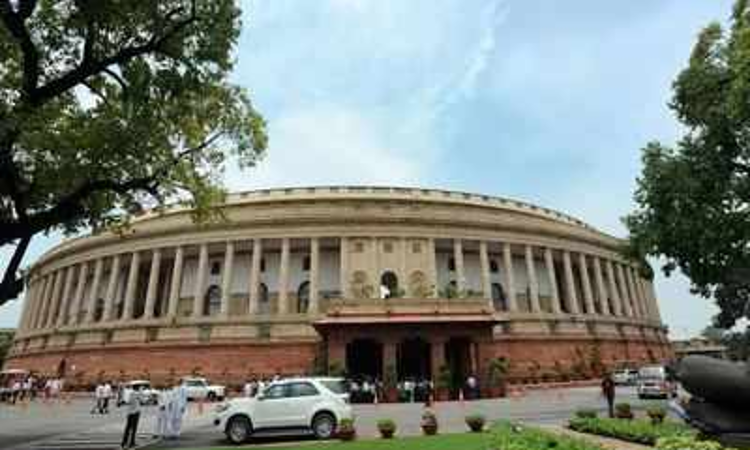
- 08 Aug 2023
What is the News ?
The Parliament has passed the Mediation Bill 2023 to reduce pendency of court cases.
Facts About:
The Mediation Bill, 2021
- It was introduced in the Rajya Sabha in December, 2021, with the Parliamentary Standing Committee being tasked with a review of the Bill.
- The Bill aims at institutionalising mediation and establishing the Mediation Council of India.
Key Features of the Bill
Pre-litigation mediation
- Parties must attempt to settle civil or commercial disputes by mediation before approaching any court or certain tribunals.
- Even if they fail to reach a settlement through pre-litigation mediation, the court or tribunal may at any stage refer the parties to mediation if they request for the same.
Disputes not fit for mediation
- The Bill contains a list of disputes which are not fit for mediation.
- These include disputesrelating to claims against minors or persons of unsound mind, involving criminal prosecution, and affecting the rights of third parties. The central government may amend this list.
Applicability
- The Bill will apply to mediations conducted in India:
involving only domestic parties
involving at least one foreign party and relating to a commercial dispute (i.e., international mediation)
if the mediation agreement states that mediation will be as per this Bill.
- If the central or state government is a party, the Bill will apply to commercial disputes, and other disputes as notified.
Mediation process
- Mediation proceedings will be confidential, and must be completed within 180 days (may be extended by 180 days by the parties).
- A party may withdraw from mediation after two sessions.
- Court annexed mediation must be conducted as per the rules framed by the Supreme Court or High Courts.
Mediators
- Mediators may be appointed bythe parties by agreement, a mediation service provider (an institution administering mediation).
- They must disclose any conflict of interest that may raise doubts on their independence.
- Parties may then choose to replace the mediator.
Concerns Highlighted by the Parliamentary Standing Committee
Pre-Litigation
- The panel highlighted many key issues including mandatory and coercive nature of pre-litigation mediation.
- Making pre-litigation mediation necessary may result in case delays and provide another instrument in the hands of truant litigants to prolong case disposition.
Clause 26: The panel was against Clause 26of the draft which gives power to the SC or the High court to make laws of pre-litigation according to them.
Non-Applicability to Non-Commercial Disputes: The members questioned the non-applicability of the provisions of the Bill to disputes/matters of non-commercial nature involving the Government and its agencies.
Appointments: The panel had discussions about the qualifications and appointment of the Chairperson and Members of the proposed Mediation Council.
Recommendations Accepted by the Union Cabinet
Reducing the Time for Concluding a Mediation
- The Union cabinet has accepted the recommendations of the standing committee by reducing the time for concluding a mediation from 180 to 90 days.
Making Pre-Litigation Mediation Voluntary
- The recommendation for making pre-litigation mediation voluntary instead of mandatory was also much needed as voluntariness is an essential principle of mediation.
Recognition and Enforcement of Agreements
- Recognition and enforcement of settlement agreements arising out of mediation is a welcome move.
- This is also in line with India’s commitment as a signatory to the United Nations Convention on International Settlement Agreements Resulting from Mediation (Singapore Convention).
Provisions of the Final Bill that Require a Relook
Limited Grounds to Challenge a Settlement Agreement
- The limited grounds listed to challenge the enforcement of a settlement agreement and the fact that a period of 90 days is given to raise the challenge need a relook.
- The fact that a settlement agreement is essentially a contract between the parties; there are several instances where grounds for challenge such as fraud and impersonation are detected at a later stage.
Technical Flaws in Clause 8
- Clause 8 of the Bill entitles a party to move the Court before the commencement or during mediation for interim relief but only in “exceptional circumstances”.
- The term “exceptional circumstances”is not only undefined in the Bill but is also abnormal to the settled principles of seeking interim relief before the civil courts.
- Moreover, there is no remedy of appeal available against an order passed under this proposed section.
The Concept of Online and Community Mediation
- A recent Niti Aayog report reveals that only 55 per cent of India have access to the internet and only 27 per cent possess compatible devices.
- For online mediation to be a success, the government will have to scale the bandwidth accessibility to remote parts of the country.
- As for community mediation, the Bill makes it mandatory to have a panel of three mediators.This requirement is unnecessary and impinges on the flexibility that mediation brings.
Restricting the Government’s Participation in Mediation to only Commercial Disputes
- The real issue is that the government is the biggest litigant in the country.
- Restricting the ability of the government to participate in mediation proceedings arising only out of commercial disputes goes against the objective of enacting the legislation.
Way Forward
Legal Aid Setup: Setting up legal aid or access to justice clinics with adequate IT infrastructure could address the issue of online mediation.
Inclusion of Government Related Disputes in the Bill
- The standing committee had also recommended that government-related disputes be included in the Bill.
- The common litigant sees the government as an adversary before the court of law. The Bill provided a golden opportunity to the government to change that perception.
- This will inspire confidence amongst all stakeholders but would also help in reducing pendency backlog.
Conclusion
Mediation should be promoted as a preferred and voluntary mode of securing justice.
Although the legislature may have intended to lighten the load on the judiciary, the law needs to be improved because it may cause a delay in the administration of justice and raise the cost of litigation.
Source: https://www.livelaw.in/news-updates/parliament-passes-mediation-bill-234671
River Devika Rejuvenation Project (PIB)
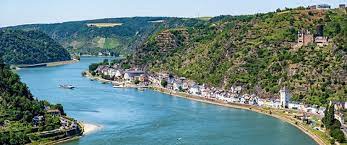
- 07 Aug 2023
What is the News ?
Recently, Union Minister of State (Independent Charge) Science & Technology sheds light on the progress of the River Rejuvenation Project, Devika. This initiative, inspired by the Namami Ganga campaign, aims to safeguard the sacred Devika River’s purity and health.
Facts About:
Comprehensive Waste Management:
- Focus on Liquid Waste Management.
- Creation of a network of pipes and manholes connecting households.
- Objective: Efficient disposal of liquid waste, preventing pollution, and preserving the sanctity of the river.
Complementary Solid Waste Management:
- Encompasses responsible collection, disposal, and management of solid waste.
- Essential to prevent environmental degradation and maintain river and surrounding health.
Financial Allocation Breakdown:
- Project investment exceeds Rs 190 crores.
- Allocation shared between Central and Union Territory (UT) at a 90:10 ratio.
Empowering Communities through PRIs:
- Panchayati Raj Institutions (PRIs) pivotal for grassroots project success.
- PRIs’ involvement enhances community engagement, fosters ownership, and promotes sustainable development practices.
Devika River:
- Originates from Suddha Mahadev temple in Jammu and Kashmir’s Udhampur district.
- Flows through western Punjab (now Pakistan) where it merges with the Ravi River.
Cultural Significance:
- Revered by Hindus as sister of the Ganga River.
- Devika River believed to be a manifestation of Goddess Parwati, benefiting the people of MaderDesha (areas between river Ravi and Chenab).
Source: https://pib.gov.in/PressReleaseIframePage.aspx?PRID=1946187
Asset Reconstruction Companies (ARCs) (LiveMint)

- 25 Jul 2023
Why in the News?
Taking advantage of the substantial number of written-off loans held by lenders and the government's recovery endeavors, ARCs are seizing the opportunity to acquire these loans.
About Asset Reconstruction Companies (ARCs):
- The Asset Reconstruction Company (ARC) functions as a distinct financial institution that acquires Non Performing Assets (NPAs) from banks and financial institutions, facilitating the process of cleansing their balance sheets.
- This enables banks to focus on their core banking activities. Instead of expending time and effort pursuing defaulters, banks can opt to sell the troubled assets to ARCs at a mutually agreed-upon value.
Legal Basis:
- The establishment of ARCs in India is supported by the Securitization and Reconstruction of Financial Assets and Enforcement of Security Interest (SARFAESI) Act, 2002.
- The SARFAESI Act streamlines the reconstruction of bad assets, avoiding the need for court intervention.
- Subsequently, numerous ARCs were established and registered with the Reserve Bank of India (RBI), which holds regulatory authority over these institutions.
Capital Needs for ARCs:
- Following the 2016 amendment to the SARFAESI Act, ARCs were mandated to possess a minimum Net Owned Fund of Rs. 2 crores. However, in 2017, the RBI increased this threshold to Rs. 100 crores.
- ARCs must maintain a Capital Adequacy Ratio (CAR) equivalent to 15% of their risk-weighted assets.
National Commission for Protection of Child Rights (NCPCR) (Indian Express)
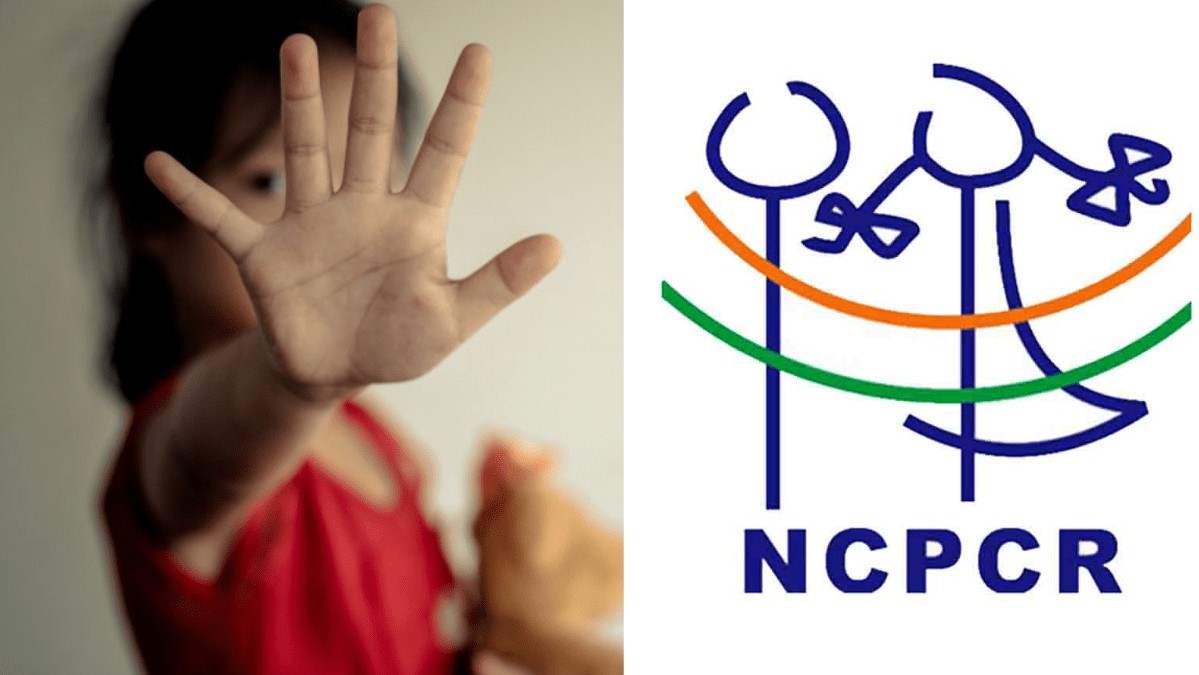
- 25 Jul 2023
Why in the News?
The National Commission for Protection of Child Rights (NCPCR) recently addressed the Manipur DGP, urging the filing of an FIR against three individuals.
About the National Commission for Protection of Child Rights (NCPCR):
- NCPCR is a statutory body set up in March 2007 under the Commissions for Protection of Child Rights (CPCR) Act, 2005.
- It is under the administrative control of the Ministry of Women & Child Development.
- The Commission's mandate is to ensure that all laws, policies, programmes, and administrative mechanisms are in consonance with the child rights perspective as enshrined in the Constitution of India and also the UN Convention on the Rights of the Child.
- It inquires into complaints relating to a child's right to free and compulsory education under the Right to Education Act, 2009.
- It monitors the implementation of Protection of Children from Sexual Offences (POCSO) Act, 2012.
Composition of NCPCR:
- This commission has a chairperson and six members of which at least two should be women.
- All of them are appointed by Central Government for three years.
- The maximum age to serve in commission is 65 years for Chairman and 60 years for members.
Functions and responsibilities of NCPCR:
- Examine and assess current safeguards for child rights and propose effective implementation strategies.
- Submit periodic reports to the central government on the efficacy of these safeguards.
- Conduct investigations into child rights violations and recommend legal action when appropriate.
- Raise awareness about child rights and available safeguards through diverse channels, such as publications, media, and seminars.
- Conduct inspections of institutions housing children, including juvenile homes, and suggest remedial measures if required.
- Investigate complaints and proactively address issues related to child rights deprivation, violation, and non-implementation of protective laws.
National Dental Commission Bill, 2023 (TIO)
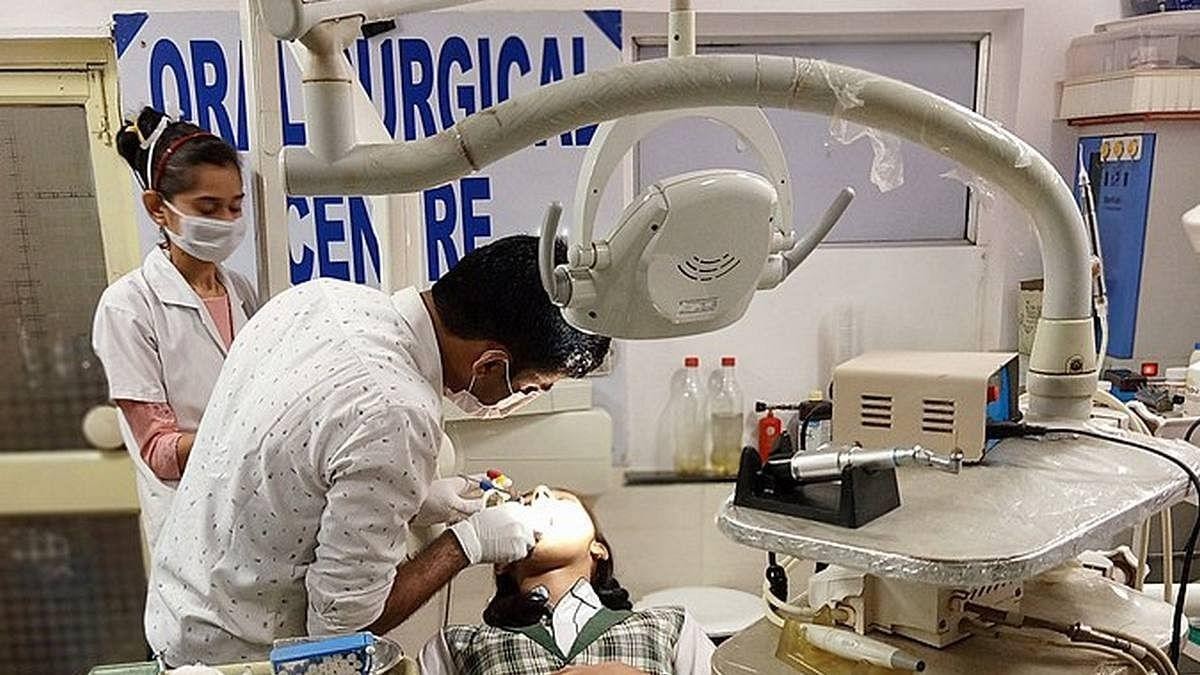
- 24 Jul 2023
Why in the News?
The Lok Sabha recently witnessed the introduction of the National Dental Commission Bill, 2023, by the government.
About National Dental Commission Bill, 2023:
- The primary objective of the Bill is to revoke the Dentists Act of 1948, ushering in new regulations and reforms.
- With a focus on affordability, the bill strives to enhance dental education accessibility and ensure quality oral healthcare services.
- In place of the existing Dental Council of India, the Bill proposes the establishment of the National Dental Commission (NDC) to oversee dental education and related matters effectively.
What is National Dental Commission (NDC)?
- The establishment of the new commission entails the formulation of policies and the maintenance of quality standards in dental education and the dental profession.
- A key responsibility of the commission will be to regulate fees for 50% of seats in private dental colleges.
Composition of NDC:
- The structure of the NDC will mirror that of the National Medical Commission (NMC), which replaced the Medical Council of India.
- The head office of the National Dental Commission will be located in New Delhi, consisting of a chairperson, eight ex officio members, and 24 part-time members and the appointment of members will be done by the central government.
- The Bill mandates that all members of the commission must declare their assets and liabilities upon entering and leaving office, along with disclosing any professional and commercial engagements they are involved in.
